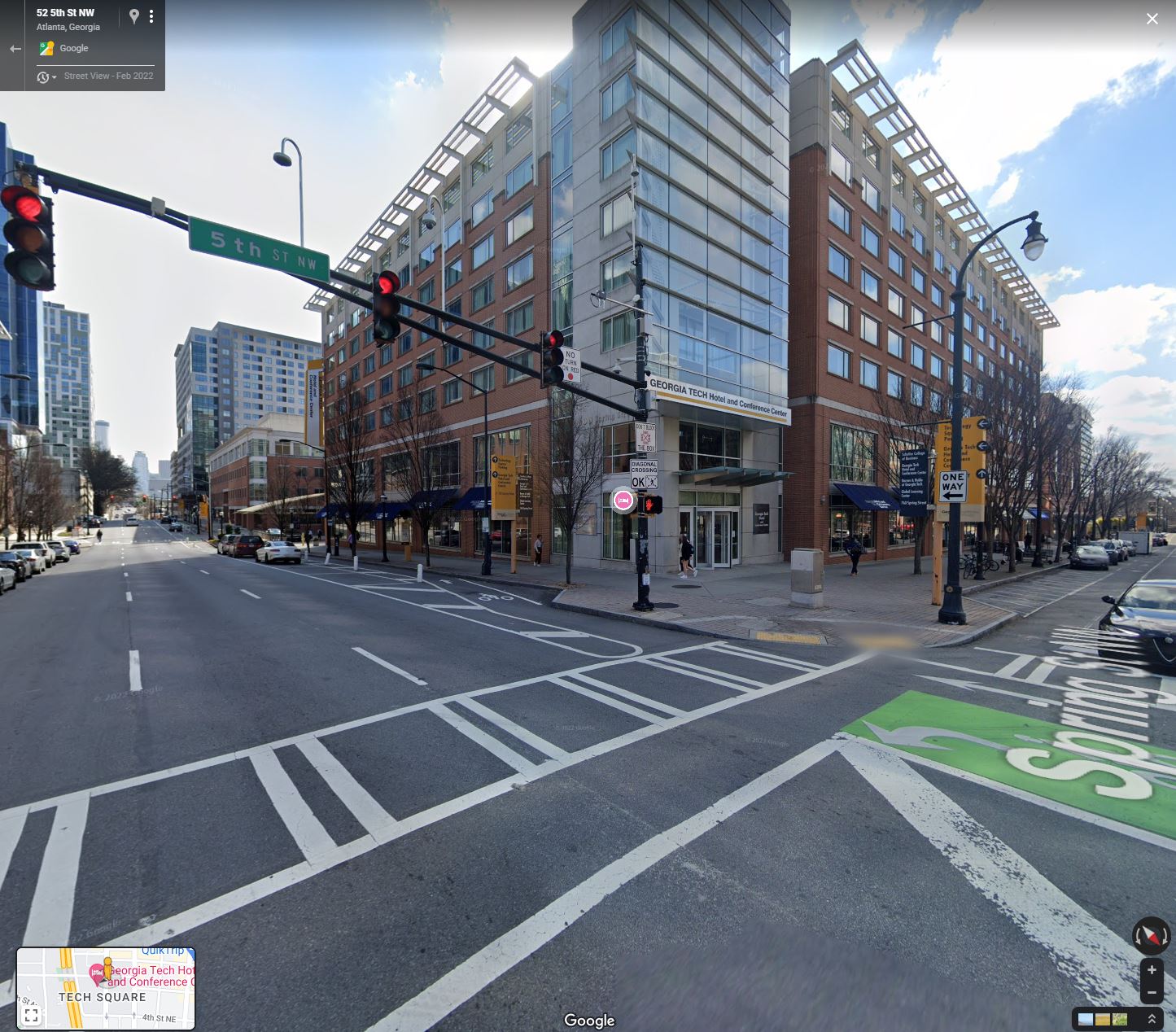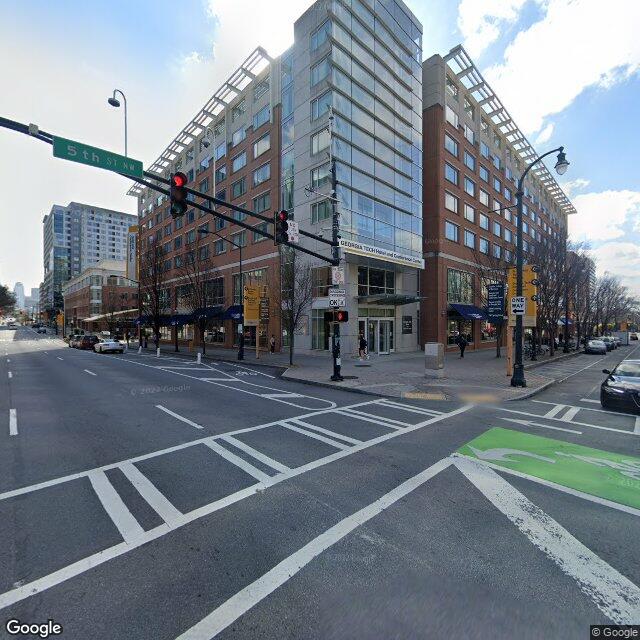class: middle, inverse # Urban Images .font100[ Bon Woo Koo & Subhro Guhathakurta 10/19/2022 ] --- <div id="htmlwidget-8b226eaae5bf968635d4" style="width:504px;height:504px;" class="leaflet html-widget"></div> <script type="application/json" data-for="htmlwidget-8b226eaae5bf968635d4">{"x":{"options":{"crs":{"crsClass":"L.CRS.EPSG3857","code":null,"proj4def":null,"projectedBounds":null,"options":{}}},"calls":[{"method":"addProviderTiles","args":["CartoDB.DarkMatterNoLabels",null,null,{"errorTileUrl":"","noWrap":false,"detectRetina":false}]},{"method":"addPolylines","args":[[[[{"lng":[-84.3723929988378,-84.3721629990231,-84.3719509991392,-84.3713209997643,-84.3709999993504,-84.3704599996292],"lat":[33.6346280000822,33.6347009998513,33.6347339995745,33.6347369997128,33.6347470001739,33.6347330004277]}]],[[{"lng":[-84.3607630003122,-84.3599779991853,-84.3590379999038,-84.3586970012656],"lat":[33.6348030000585,33.6347860001738,33.6347860001738,33.6348040001046]}]],[[{"lng":[-84.3622850003525,-84.3617120000088,-84.3607630003122],"lat":[33.6348240001275,33.6348660002657,33.6348030000585]}]],[[{"lng":[-84.3699059992624,-84.3691749988271,-84.3690660000958],"lat":[33.6349080004039,33.6332569998107,33.6328370002274]}]],[[{"lng":[-84.3687129991056,-84.3687069988289,-84.3687189993823,-84.3687229986674,-84.368615999129,-84.3684389990605],"lat":[33.6349670004268,33.6348860002888,33.6347809999432,33.6346510002435,33.6344079998294,33.634088000361]}]],[[{"lng":[-84.3687129991056,-84.3679410003768],"lat":[33.6349670004268,33.6349479995506]}]],[[{"lng":[-84.3699059992624,-84.3697619989171,-84.3694570001404,-84.3692529997261,-84.3687129991056],"lat":[33.6349080004039,33.6349390000349,33.6349630002423,33.6349860004037,33.6349670004268]}]],[[{"lng":[-84.360790000658,-84.3607630003122],"lat":[33.6357739998703,33.6348030000585]}]],[[{"lng":[-84.3703379993991,-84.3704599996292],"lat":[33.6357939998932,33.6347330004277]}]],[[{"lng":[-84.3703379993991,-84.3701809993536,-84.3701299996997,-84.3700439993311,-84.3699059992624],"lat":[33.6357939998932,33.6356040001245,33.6354019998025,33.635173000034,33.6349080004039]}]],[[{"lng":[-84.3624820004439,-84.3616559992249,-84.360790000658],"lat":[33.6358519998699,33.6358760000774,33.6357739998703]}]],[[{"lng":[-84.3723929988378,-84.3725970001514,-84.3726109998977,-84.3726179993212,-84.3725959992059],"lat":[33.6346280000822,33.6351519999649,33.6354920003556,33.6358020002622,33.635984999708]}]],[[{"lng":[-84.3725959992059,-84.3703969994219],"lat":[33.635984999708,33.6359819995697]}]],[[{"lng":[-84.3736769995938,-84.3725959992059],"lat":[33.6359909999847,33.635984999708]}]],[[{"lng":[-84.3580389997001,-84.3581179988465,-84.3582689995147],"lat":[33.6360110000077,33.635751999755,33.6351040004493]}]],[[{"lng":[-84.3580389997001,-84.3580219989161,-84.3568569991511],"lat":[33.6360110000077,33.6360000003997,33.635437999664]}]],[[{"lng":[-84.3681090009296,-84.3675149996175],"lat":[33.6363090002602,33.6356769998937]}]],[[{"lng":[-84.3697189987328,-84.3698159987093,-84.3699159988242,-84.3699999991006,-84.3702739991457,-84.3703969994219],"lat":[33.6365020001672,33.6363779998449,33.6362880001911,33.6362049999609,33.636034000169,33.6359819995697]}]],[[{"lng":[-84.3697189987328,-84.3693199992185,-84.3690869992656,-84.3689670009263,-84.368751000858,-84.3685470004437,-84.3683649992453,-84.3682799998221,-84.3681090009296],"lat":[33.6365020001672,33.6364129996603,33.6362720003526,33.6361730002838,33.636024999754,33.635993000077,33.6360580003765,33.636165999961,33.6363090002602]}]],[[{"lng":[-84.3662709998068,-84.3661329988388,-84.3659729986549],"lat":[33.6366079996595,33.636388000306,33.6361989996842]}]],[[{"lng":[-84.3597679993936,-84.3593759993029,-84.3589219999503,-84.3586970012656],"lat":[33.6367970002814,33.6360310000307,33.6352000003798,33.6348040001046]}]],[[{"lng":[-84.3607979992282,-84.3607789992514,-84.3607819993897,-84.3607930007963,-84.360790000658],"lat":[33.6369599997043,33.636733000028,33.636227000076,33.6360900000535,33.6357739998703]}]],[[{"lng":[-84.3662709998068,-84.3655719990485],"lat":[33.6366079996595,33.6369930003268]}]],[[{"lng":[-84.3655719990485,-84.36539499898,-84.3652399990267,-84.3650789987967,-84.3647899989592,-84.3645260002747,-84.3641619996765,-84.363863999424,-84.363673998756,-84.3635019989181,-84.3632359992419,-84.3629979999577,-84.3624820004439],"lat":[33.6369930003268,33.6368209995895,33.636733000028,33.6366560000744,33.6366020002822,33.636581000213,33.6365620002362,33.636408000329,33.6362300002144,33.6360790004456,33.6359370001925,33.6358889997776,33.6358519998699]}]],[[{"lng":[-84.3594669999021,-84.3587200005276,-84.3585269997212,-84.3580389997001],"lat":[33.6370140003959,33.6364210000292,33.6362900002833,33.6360110000077]}]],[[{"lng":[-84.3607979992282,-84.3599909988855],"lat":[33.6369599997043,33.6372070003029]}]],[[{"lng":[-84.3748129998201,-84.3747559989901],"lat":[33.6374740000251,33.6368770003733]}]],[[{"lng":[-84.3748129998201,-84.3746689994747,-84.374487000075,-84.3743439988764,-84.3742320000068,-84.3740380000536,-84.3738619991319,-84.3737349995706,-84.3736269990867],"lat":[33.6374740000251,33.6374449995871,33.6374249995641,33.6373800001869,33.6373089996107,33.6372729997492,33.6371850001877,33.6371420000033,33.6371430000495]}]],[[{"lng":[-84.3622120005833,-84.3623539999371,-84.3624440004902,-84.3625039987605,-84.3625150010664,-84.3624820004439],"lat":[33.6374899998636,33.6365549999134,33.6363369997528,33.6361789996612,33.6360209995696,33.6358519998699]}]],[[{"lng":[-84.3754939988489,-84.3748129998201],"lat":[33.6375069997483,33.6374740000251]}]],[[{"lng":[-84.3622120005833,-84.3619719994082,-84.3617700008848,-84.3615749990869,-84.36134299918,-84.3609309999657,-84.3607979992282],"lat":[33.6374899998636,33.6375059997022,33.6375069997483,33.6374980002326,33.6374509998638,33.6371470002339,33.6369599997043]}]],[[{"lng":[-84.3771830002952,-84.3769869993505,-84.3767319992823,-84.3764489988222,-84.3760090001152,-84.3758139992166,-84.3754939988489],"lat":[33.6370500002574,33.6370569996809,33.6371620000263,33.6373349999104,33.6375099998866,33.63752200044,33.6375069997483]}]],[[{"lng":[-84.3655719990485,-84.365475999118,-84.3653339988649,-84.3649819997195,-84.3647259996052,-84.3644279993526],"lat":[33.6369930003268,33.6370700002803,33.6371620000263,33.6373489996566,33.6374649996101,33.6375540001171]}]],[[{"lng":[-84.3644279993526,-84.3630829993809,-84.3622120005833],"lat":[33.6375540001171,33.637441000302,33.6374899998636]}]],[[{"lng":[-84.367124999619,-84.3662709998068],"lat":[33.6375980003475,33.6366079996595]}]],[[{"lng":[-84.3697229989172,-84.3697189987328],"lat":[33.6377120002087,33.6365020001672]}]],[[{"lng":[-84.3697229989172,-84.3693909988954,-84.3691399999111,-84.3689569995659,-84.3688259989207,-84.3687309999357,-84.3686570001204,-84.3685709988525,-84.3683619991069,-84.368247000099,-84.3681090009296],"lat":[33.6377120002087,33.6377140003009,33.6377080000242,33.6376869999551,33.6376330001629,33.6375499999326,33.6374760001174,33.6372769999336,33.6367340000741,33.6364880004209,33.6363090002602]}]],[[{"lng":[-84.3603160012824,-84.3599909988855],"lat":[33.6377999997702,33.6372070003029]}]],[[{"lng":[-84.3597000007544,-84.3598030010077,-84.3599649994851,-84.3601669998072,-84.3603160012824],"lat":[33.6371620000263,33.6372790000259,33.6374459996332,33.6376560003242,33.6377999997702]}]],[[{"lng":[-84.3771769991192,-84.3771830002952],"lat":[33.6378510003235,33.6370500002574]}]],[[{"lng":[-84.3736269990867,-84.3736109992482,-84.3734680007476,-84.3733550009325,-84.3731599991346,-84.3728959986514,-84.3724729989297,-84.3717270005006],"lat":[33.6371430000495,33.6374380001636,33.6375829996558,33.6376700000705,33.6377399997013,33.6377540003469,33.6377670000471,33.637867000162]}]],[[{"lng":[-84.3717270005006,-84.3709179991663,-84.3705539994675,-84.3703969994219],"lat":[33.637867000162,33.6367059996822,33.6362239999377,33.6359819995697]}]],[[{"lng":[-84.3906790003356,-84.3907739993206,-84.3907869990207,-84.3908329993434,-84.3908189986978,-84.3908129993204,-84.3907199995283,-84.3906329991136,-84.3905709989524,-84.3904889996676,-84.390308000314,-84.3901059999919,-84.3900909993001,-84.3894999990257,-84.3894579997868],"lat":[33.6380919997461,33.6372420001182,33.6369449999119,33.6359259996852,33.6357080004239,33.6356179998709,33.6351709999417,33.6348699995509,33.6347080001741,33.634494000198,33.6341020001072,33.6337259998551,33.6337079999243,33.6329770003883,33.6329219996506]}]],[[{"lng":[-84.3906790003356,-84.3919059993623],"lat":[33.6380919997461,33.6381370000226]}]],[[{"lng":[-84.3902789998759,-84.3903489995067],"lat":[33.6382000002299,33.637220000003]}]],[[{"lng":[-84.3902789998759,-84.3892760003871,-84.3892559994648,-84.3855919986718],"lat":[33.6382000002299,33.6381960000454,33.6381960000454,33.6381820002991]}]],[[{"lng":[-84.3569509989894,-84.3570690008337,-84.3572149994726,-84.3573629991031,-84.3579509992392,-84.3580389997001],"lat":[33.6382319999069,33.6380559998846,33.6378149995626,33.637524999679,33.6362359995917,33.6360110000077]}]],[[{"lng":[-84.367124999619,-84.3664479998753,-84.3656559993249,-84.3645119987297],"lat":[33.6375980003475,33.6378019998625,33.638010999608,33.6382469996993]}]],[[{"lng":[-84.3645119987297,-84.3644279993526],"lat":[33.6382469996993,33.6375540001171]}]],[[{"lng":[-84.3569509989894,-84.3538909990703],"lat":[33.6382319999069,33.6382550000682]}]],[[{"lng":[-84.367660000009,-84.3674569996408,-84.367124999619],"lat":[33.6382800003218,33.6379739997004,33.6375980003475]}]],[[{"lng":[-84.3697170004392,-84.3697229989172],"lat":[33.6387549997435,33.6377120002087]}]],[[{"lng":[-84.3710269996963,-84.370475000321,-84.3697170004392],"lat":[33.6388850003426,33.638770999582,33.6387549997435]}]],[[{"lng":[-84.3958129996702,-84.3958410000621,-84.3958739997852,-84.3960109989084,-84.3962499991381,-84.396380998884,-84.3963829998755,-84.3963849990684,-84.3963959995757,-84.3963730003137,-84.3962609996454,-84.3961580011908],"lat":[33.6390030003882,33.6382889998375,33.6381440003454,33.6377670000471,33.6372129996802,33.6367390003047,33.6367180002356,33.6366879997514,33.6365610001901,33.6363419999834,33.6358869996853,33.6356759998476]}]],[[{"lng":[-84.367660000009,-84.3674029998485,-84.3672610004948,-84.3670709998268,-84.3668230000814,-84.3663849987686,-84.365740998748,-84.3653230001563,-84.3644769989143],"lat":[33.6382800003218,33.6383970003213,33.6384760003672,33.6385609997903,33.6386520003896,33.6387929996972,33.6389780001347,33.6390299998347,33.6391219995807]}]],[[{"lng":[-84.3644769989143,-84.3644869993755,-84.3645119987297],"lat":[33.6391219995807,33.6385540003669,33.6382469996993]}]],[[{"lng":[-84.3697170004392,-84.3690569996808,-84.3690340004188,-84.368115000307],"lat":[33.6387549997435,33.6388769999736,33.6388840002964,33.6391489999265]}]],[[{"lng":[-84.368115000307,-84.367660000009],"lat":[33.6391489999265,33.6382800003218]}]],[[{"lng":[-84.3902510012826,-84.3902789998759],"lat":[33.6391699999955,33.6382000002299]}]],[[{"lng":[-84.3985689999594,-84.3997509987096,-84.4001940002529,-84.400358999768,-84.4005189990525,-84.4006309988215,-84.4007019993977,-84.4007409993976,-84.4007439995359,-84.4007179992362,-84.4005460002977,-84.400378999791,-84.4002209988],"lat":[33.6366449995671,33.6366069996134,33.6366190001668,33.636641000282,33.6366780001896,33.6367520000048,33.6368429997047,33.6370029998886,33.6371539996574,33.6375930001169,33.6383259997451,33.6387830001354,33.6392750003411]}]],[[{"lng":[-84.3958129996702,-84.3964379997139,-84.3966169989753,-84.3970710001265,-84.3983760000523,-84.3988809990588,-84.4002209988],"lat":[33.6390030003882,33.6389889997426,33.6389849995581,33.6390230004112,33.6392900001334,33.639315000387,33.6392750003411]}]],[[{"lng":[-84.3902510012826,-84.3899589995082,-84.3893449999717,-84.3890960001802,-84.3890589993733,-84.3855589998479,-84.3854539995024,-84.3853289991339,-84.3851799994574,-84.3850079996195,-84.3849119987897,-84.384770999482,-84.3846769987445,-84.3845869990907,-84.3845370003822,-84.3835779993252,-84.381841000162,-84.3818649994701,-84.3818190000468,-84.3792270010252,-84.3790889991579,-84.3789929992275],"lat":[33.6391699999955,33.6391489999265,33.6391600004337,33.6391980003875,33.6391970003414,33.639144999742,33.6391669998572,33.6391999995803,33.6392629997877,33.6393300001794,33.6393559995798,33.639357999672,33.6393419998335,33.6393110002026,33.6393090001103,33.6392940003179,33.6393700002254,33.6393819998794,33.6393829999255,33.6393320002716,33.6393769996488,33.6394349996256]}]],[[{"lng":[-84.3727109991133,-84.3726959993209,-84.3727040005891,-84.3720009996464,-84.3717270005006],"lat":[33.6394480002251,33.639357999672,33.6392900001334,33.6382659996762,33.637867000162]}]],[[{"lng":[-84.3727109991133,-84.3722249991843,-84.37143899981,-84.3710269996963],"lat":[33.6394480002251,33.639295000364,33.6390309998808,33.6388850003426]}]],[[{"lng":[-84.368115000307,-84.367806998694,-84.367006998674,-84.3663309989764,-84.3657799987479,-84.3652059992574,-84.3646329998131],"lat":[33.6391489999265,33.6392799996723,33.6395719996481,33.6397630003622,33.6398469997393,33.6398970002464,33.6399029996238]}]],[[{"lng":[-84.3646329998131,-84.3644769989143],"lat":[33.6399029996238,33.6391219995807]}]],[[{"lng":[-84.3614109987186,-84.3603160012824],"lat":[33.6399059997621,33.6377999997702]}]],[[{"lng":[-84.3646329998131,-84.3643809998832,-84.3617069988788],"lat":[33.6399029996238,33.6399079998544,33.6399059997621]}]],[[{"lng":[-84.3614109987186,-84.3613569998257,-84.3602730001988,-84.3600209993696,-84.3598379999237,-84.3592160000184],"lat":[33.6399059997621,33.6399059997621,33.6399150001772,33.6399219996006,33.6399269998312,33.6400560003842]}]],[[{"lng":[-84.3709170000195,-84.370915999074,-84.3709389992354,-84.3710269996963],"lat":[33.6400930002918,33.6393270000411,33.6391089998805,33.6388850003426]}]],[[{"lng":[-84.390178999761,-84.3902510012826],"lat":[33.6401320002917,33.6391699999955]}]],[[{"lng":[-84.3905240003823,-84.3906790003356],"lat":[33.6401330003378,33.6380919997461]}]],[[{"lng":[-84.3905240003823,-84.3918690003541,-84.3922920000757],"lat":[33.6401330003378,33.6401749995766,33.6401799998072]}]],[[{"lng":[-84.3923699991761,-84.3923929993374],"lat":[33.6401809998533,33.6394559996947]}]],[[{"lng":[-84.3957159996936,-84.3957959997855,-84.3958129996702],"lat":[33.6401939995535,33.6394369997178,33.6390030003882]}]],[[{"lng":[-84.3923699991761,-84.3943260003446,-84.3957159996936],"lat":[33.6401809998533,33.6401890002222,33.6401939995535]}]],[[{"lng":[-84.4031800003567,-84.4031509999187,-84.402862999228,-84.4027120003585,-84.4026949986752,-84.4026959996207],"lat":[33.6402110003374,33.6396650003396,33.6383010003909,33.6374810003479,33.6373060003717,33.6372579999568]}]],[[{"lng":[-84.4031800003567,-84.4059999991006],"lat":[33.6402110003374,33.6402480002451]}]],[[{"lng":[-84.3756009992866,-84.3765180002055,-84.3768379987746,-84.3775760013314,-84.3783459999679,-84.3787919989516,-84.3790140010952,-84.3791590005874,-84.3793260001947,-84.3794129997102,-84.3794450002865,-84.3794549998483,-84.379481000148,-84.3795170000095,-84.3795580001016,-84.3796160000783,-84.3798119992243,-84.379837999524,-84.3799059990625],"lat":[33.6404329997832,33.639660000109,33.6393399997413,33.6387539996974,33.6382719999529,33.638028000392,33.6379070002079,33.6377989997241,33.6375800004167,33.6373440003254,33.6371810000032,33.6365420002132,33.6363090002602,33.6359859997542,33.635801000216,33.6356389999399,33.6352419996186,33.635193000057,33.635061000265]}]],[[{"lng":[-84.3756009992866,-84.375097999473,-84.3740819993847,-84.3736810006776,-84.3727109991133],"lat":[33.6404329997832,33.6403420000833,33.6399780003845,33.6398230004312,33.6394480002251]}]],[[{"lng":[-84.4002209988,-84.4001189994922,-84.3997709987325],"lat":[33.6392750003411,33.6395939997633,33.6405160000135]}]],[[{"lng":[-84.376239999976,-84.3756009992866],"lat":[33.6405390001748,33.6404329997832]}]],[[{"lng":[-84.3592160000184,-84.3585269997212,-84.3580369987085,-84.3573089993108],"lat":[33.6400560003842,33.640330999576,33.6404899997138,33.6406220004051]}]],[[{"lng":[-84.3573089993108,-84.3571059989426],"lat":[33.6406220004051,33.6398420004081]}]],[[{"lng":[-84.3544749990219,-84.3549399997812,-84.3560180000306,-84.356035999062,-84.3564310001905,-84.3566909995899,-84.3569319990125,-84.3569509989894],"lat":[33.6406730000589,33.6402430000145,33.6391990004336,33.6391819996496,33.6388270003658,33.6385530003208,33.6382610003449,33.6382319999069]}]],[[{"lng":[-84.3573089993108,-84.3563910001445,-84.3557860001238],"lat":[33.6406220004051,33.6407390004046,33.6407419996436]}]],[[{"lng":[-84.3557860001238,-84.3551589990885,-84.3544749990219],"lat":[33.6407419996436,33.6407000004048,33.6406730000589]}]],[[{"lng":[-84.3784980006822,-84.3788719999428,-84.3789929992275],"lat":[33.6408769995739,33.639508000294,33.6394349996256]}]],[[{"lng":[-84.3784980006822,-84.3768470009883,-84.3764889997675],"lat":[33.6408769995739,33.6406200003128,33.6405640004284]}]],[[{"lng":[-84.3544749990219,-84.354438000913,-84.3540769995539,-84.3537659987018,-84.3534849992333],"lat":[33.6406730000589,33.6406720000128,33.6407999996204,33.6408940003579,33.6409930004267]}]],[[{"lng":[-84.4006560008737,-84.4009729993044,-84.4012699995108,-84.4016149992328],"lat":[33.6408239998278,33.6409340004038,33.6410149996426,33.6410609999652]}]],[[{"lng":[-84.4031339991347,-84.4031930000569,-84.4031800003567],"lat":[33.6410660001958,33.6404549998984,33.6402110003374]}]],[[{"lng":[-84.4017109991632,-84.4023160000833],"lat":[33.6410670002419,33.6410660001958]}]],[[{"lng":[-84.4024770003133,-84.4031339991347],"lat":[33.6410700003802,33.6410660001958]}]],[[{"lng":[-84.4196709991173,-84.4195770001784,-84.4192589990035,-84.4173160002332,-84.4166680000282,-84.4159369986935,-84.4155019993178,-84.4135579987026,-84.4082579998068,-84.4067149996974,-84.4059959989162],"lat":[33.641088000311,33.6408649999199,33.6406879998514,33.6407439997358,33.6407469998742,33.6408649999199,33.6409229998966,33.6409280001271,33.6408999997353,33.6409349995507,33.641110999573]}]],[[{"lng":[-84.4059959989162,-84.4059999991006],"lat":[33.641110999573,33.6402480002451]}]],[[{"lng":[-84.4031339991347,-84.4048960012494,-84.4059959989162],"lat":[33.6410660001958,33.6411020000573,33.641110999573]}]],[[{"lng":[-84.3534849992333,-84.353280998819,-84.353024999604,-84.3527359997665],"lat":[33.6409930004267,33.6410729996193,33.6412040002645,33.6413719999179]}]],[[{"lng":[-84.4059959989162,-84.4135459999479,-84.415595999156,-84.4169859994043,-84.4177399991016,-84.4188229986824,-84.4195059996022,-84.41968300057,-84.4196709991173],"lat":[33.641110999573,33.6412489996417,33.6412180000107,33.6412650003795,33.6414889999174,33.6415009995715,33.6414540001021,33.6412770000336,33.641088000311]}]],[[{"lng":[-84.3591659995112,-84.3592049995111,-84.3593780002944,-84.3593919991414,-84.3592160000184],"lat":[33.6415930002169,33.6414709999867,33.6410440000806,33.6405699998057,33.6400560003842]}]],[[{"lng":[-84.3923769994989,-84.3923649989455,-84.3924630007668,-84.392440998853,-84.3922920000757],"lat":[33.6416470000091,33.641433000033,33.6409730004037,33.6405770001285,33.6401799998072]}]],[[{"lng":[-84.3557760005619,-84.3557860001238],"lat":[33.6417009998013,33.6407419996436]}]],[[{"lng":[-84.3900689991849,-84.3901740004297,-84.390178999761],"lat":[33.6419889995927,33.6402019999224,33.6401320002917]}]],[[{"lng":[-84.358962999143,-84.3591659995112],"lat":[33.6420679996385,33.6415930002169]}]],[[{"lng":[-84.3898589993933,-84.389248999142,-84.3885249999288,-84.3880810010373,-84.3878139995164,-84.3873810002329,-84.3854950004938,-84.3847020007967,-84.3834969991871,-84.3817769999086,-84.3784980006822],"lat":[33.6420030002383,33.6420380000537,33.6421800003068,33.6422669998223,33.6422610004449,33.6422360001913,33.6419480004,33.6418579998469,33.6416370004472,33.6413830004252,33.6408769995739]}]],[[{"lng":[-84.3599339989548,-84.3599060003616,-84.3598389999698,-84.3596859992094,-84.3591899997187,-84.358962999143],"lat":[33.6425730004437,33.6424500001674,33.642365999891,33.642284999753,33.6421269996613,33.6420679996385]}]],[[{"lng":[-84.3958079994396,-84.3958069993935,-84.3958039992551,-84.395822999232,-84.3958169989553,-84.3958329987938],"lat":[33.6430590003726,33.6428269995664,33.6423150002371,33.6419010000312,33.640897999643,33.6401939995535]}]],[[{"lng":[-84.35841299986,-84.358962999143],"lat":[33.6431740002799,33.6420679996385]}]],[[{"lng":[-84.35841299986,-84.3581059991924,-84.3579449998618,-84.3578489999314,-84.3578539992626,-84.3580780005992,-84.3583469995144,-84.3587390005044,-84.3591659995112],"lat":[33.6431740002799,33.6430320000268,33.6428499997277,33.6426700004203,33.6418900004232,33.6415479999403,33.6414089998256,33.6414479998254,33.6415930002169]}]],[[{"lng":[-84.3997709987325,-84.3995159986644,-84.3991400002108,-84.3988660001658,-84.3988339995894,-84.3987329994283,-84.3986539993825,-84.3985049997059,-84.3982889996376,-84.3979860000538,-84.3978599996393,-84.397270999457,-84.3966860003586,-84.3960949991848,-84.3960089997155],"lat":[33.6405160000135,33.6413000001949,33.6422360001913,33.6428269995664,33.6429160000734,33.6430370002574,33.6431209996345,33.6431900001185,33.6432160004181,33.6432019997725,33.6432070000031,33.6432039998647,33.6432090000953,33.6432140003259,33.6431970004413]}]],[[{"lng":[-84.3660100012605,-84.3657209987251,-84.3653239993031,-84.3651260000648,-84.3646430002742,-84.3643549995836,-84.3640799994923,-84.3639390001847,-84.3636869993555,-84.3631980001875],"lat":[33.6431510001186,33.643165999911,33.6431580004414,33.6431380004184,33.6430200003728,33.6430029995888,33.6430079998194,33.6430210004189,33.6430750002111,33.6432619998415]}]],[[{"lng":[-84.3631980001875,-84.3622179999607,-84.3615469995943],"lat":[33.6432619998415,33.6413709998718,33.6401710002915]}]],[[{"lng":[-84.3956840000166,-84.3957069992786,-84.3957029999934,-84.3956979988635,-84.3957159996936],"lat":[33.6433500003023,33.6424019997526,33.641910999593,33.6413449995721,33.6401939995535]}]],[[{"lng":[-84.3556789996861,-84.3557760005619],"lat":[33.6436970001165,33.6417009998013]}]],[[{"lng":[-84.3556789996861,-84.3546129990906,-84.3537509998088,-84.3536289995786,-84.3536369990482,-84.3536729998091,-84.3537709989324,-84.3541869992306,-84.3544919998059,-84.3547079998743,-84.3547960003351,-84.3549809989739,-84.355485999779,-84.3557760005619],"lat":[33.6436970001165,33.6436780001396,33.6436180000707,33.6434840001865,33.6432310002106,33.643104999796,33.6429810003729,33.6427529997512,33.6425199997982,33.6420050003305,33.6418169997548,33.6417359996167,33.6417049999858,33.6417009998013]}]],[[{"lng":[-84.3567329997281,-84.3567780000047,-84.3566389989905,-84.3560240003073,-84.3557760005619],"lat":[33.6437119999089,33.6419630001923,33.6417690002392,33.6416609997554,33.6417009998013]}]],[[{"lng":[-84.3567329997281,-84.3556789996861],"lat":[33.6437119999089,33.6436970001165]}]],[[{"lng":[-84.371047998866,-84.3710810003878,-84.3710430004341,-84.3709639994889,-84.3708809992586,-84.3708969990972,-84.3709170000195],"lat":[33.6439419997236,33.6422170002144,33.6418470002389,33.6415170003094,33.6409890002422,33.6407570003353,33.6400930002918]}]],[[{"lng":[-84.371047998866,-84.3711019995576,-84.3711679990039,-84.371385000917,-84.371621000109,-84.3717539990478,-84.3718189993473,-84.3718929991625,-84.3720769986545,-84.3722070001529,-84.3722919986768,-84.3723720005673,-84.3724059994373,-84.3724289995986,-84.3724450003365,-84.3724549998983,-84.3724580000367,-84.3724590009821,-84.37245199976,-84.3724209992297,-84.3723850002675,-84.3723549997834,-84.3723309986766,-84.3722939996683,-84.3722919986768,-84.3722889994377,-84.3722929987229,-84.372310999553,-84.3723119986997,-84.3723049992763,-84.3722759988382,-84.3722490011904,-84.3722189989076,-84.3721769987694,-84.3721309993461,-84.3720889992079,-84.3720449989775,-84.3719929992774,-84.3719330001078,-84.3718609994855,-84.3717879997164,-84.3715169998097,-84.3709170000195],"lat":[33.6439419997236,33.6439649998849,33.6439920002307,33.6440290001383,33.6440189996771,33.644015000392,33.6440070000231,33.6439629997927,33.6438920001158,33.6437990003237,33.6436869996554,33.6435729997942,33.6435139997713,33.6434559997946,33.6433969997718,33.643337999749,33.64327799968,33.6432130002798,33.6431490000264,33.6430200003728,33.6428859995893,33.6427489995667,33.6426250001437,33.6424290000983,33.6421109998228,33.6418620000313,33.6415839998018,33.6412349998954,33.6409850000578,33.6408300001045,33.6406829996208,33.6406170001745,33.6405529999211,33.6404899997138,33.6404149998524,33.640360000014,33.6403009999912,33.6402520004295,33.6402050000607,33.6401599997842,33.6401199997383,33.6400809997384,33.6400930002918]}]],[[{"lng":[-84.390000998747,-84.3899939993236,-84.3899930001768,-84.3899790004305,-84.3900579986777],"lat":[33.6440850000228,33.6440359995618,33.6440070000231,33.6437350000703,33.6421980002376]}]],[[{"lng":[-84.390000998747,-84.3890049986817,-84.3882779993302,-84.3873209992647,-84.3867520000048],"lat":[33.6440850000228,33.6440569996309,33.6440239999077,33.6439940003229,33.6439720002077]}]],[[{"lng":[-84.3578580003464,-84.35841299986],"lat":[33.6442810000681,33.6431740002799]}]],[[{"lng":[-84.4017229997166,-84.4017819988401,-84.4022979992532,-84.4028030000584,-84.4030299988353,-84.4031339991347],"lat":[33.6444040003444,33.6442810000681,33.6432169995649,33.6421170000995,33.6414889999174,33.6410660001958]}]],[[{"lng":[-84.3593529991415,-84.3593289998335,-84.359354000087,-84.3593759993029,-84.359488999118,-84.3595779987256,-84.3596359996017,-84.3599019992778,-84.3599339989548],"lat":[33.6445659997212,33.6444079996295,33.6442739997453,33.6438619996316,33.6434769998637,33.643287000095,33.6432619998415,33.6427020000973,33.6425730004437]}]],[[{"lng":[-84.3593529991415,-84.3578580003464],"lat":[33.6445659997212,33.6442810000681]}]],[[{"lng":[-84.3556600006085,-84.3556789996861],"lat":[33.6446730001589,33.6436970001165]}]],[[{"lng":[-84.3556600006085,-84.3544109987685],"lat":[33.6446730001589,33.6446580003665]}]],[[{"lng":[-84.3500489999614,-84.3504270003058,-84.3527090003201,-84.3542380006832,-84.3544749990219],"lat":[33.6447700001355,33.6444200001829,33.6422920000758,33.6408609997354,33.6406730000589]}]],[[{"lng":[-84.3711249988196,-84.3710390002497,-84.371047998866],"lat":[33.6449090002502,33.6444259995603,33.6439419997236]}]],[[{"lng":[-84.356702999244,-84.3567329997281],"lat":[33.6449110003425,33.6437119999089]}]],[[{"lng":[-84.357408000279,-84.3578580003464],"lat":[33.6450539997423,33.6442810000681]}]],[[{"lng":[-84.356702999244,-84.357408000279],"lat":[33.6449110003425,33.6450539997423]}]],[[{"lng":[-84.3522930000219,-84.3522930000219,-84.3522909999297,-84.3522889989381,-84.3522899998836,-84.3522919990764,-84.3522930000219,-84.3522930000219,-84.352294000068,-84.3522930000219,-84.3522919990764,-84.3522899998836,-84.3522849987536,-84.3522759992379,-84.3522649987307,-84.3522489988922,-84.3522259996301,-84.3521979992382,-84.3521669996073,-84.3521349999303,-84.3521039994],"lat":[33.6450610000651,33.6450349997655,33.6449739996504,33.6449110003425,33.6448480001351,33.6447819997895,33.6446510000437,33.6445869997902,33.6445259996752,33.6444659996063,33.6443489996067,33.6442890004371,33.6442300004142,33.6441729995843,33.644117999746,33.6440660000459,33.6440169995849,33.6439710001616,33.6439279999773,33.6438869998852,33.6438489999314]}]],[[{"lng":[-84.3522930000219,-84.3522059996072,-84.3521279987081,-84.3520739998152,-84.3520169989853,-84.3519589990086,-84.3518969997467,-84.351836000531,-84.3517749995166,-84.3517149994476,-84.3516529992864,-84.3515909991253,-84.3515289998634,-84.3514709998867,-84.3514089988262,-84.3513479996105,-84.3512910005792,-84.3512359998415,-84.3511850001876,-84.3511379989195,-84.3510609998652,-84.3510049990814,-84.3509279991278],"lat":[33.6450610000651,33.6450559998346,33.645050999604,33.6450549997884,33.6450610000651,33.6450690004341,33.6450830001804,33.6451010001111,33.6451230002263,33.6451499996728,33.6451830002953,33.6452200002029,33.6452590002028,33.6452990002487,33.6453390002947,33.6453780002946,33.6454140001561,33.6454479999253,33.6454809996484,33.6455110001326,33.6455619997865,33.645597999648,33.645647000109]}]],[[{"lng":[-84.3566789999359,-84.356702999244],"lat":[33.6458369998777,33.6449110003425]}]],[[{"lng":[-84.3556359995017,-84.3556600006085],"lat":[33.6458410000621,33.6446730001589]}]],[[{"lng":[-84.3541259991155,-84.3542540005217,-84.3548749994816,-84.3551199990886,-84.3554159992489,-84.3555989995941,-84.3556359995017],"lat":[33.6457409999472,33.6457329995783,33.6457139996015,33.645718999832,33.6457549996935,33.6458359998316,33.6458410000621]}]],[[{"lng":[-84.3592529990266,-84.3592610002949,-84.3593550010324,-84.3593529991415],"lat":[33.6460689997846,33.6456710003164,33.6448809998583,33.6445659997212]}]],[[{"lng":[-84.3517619998164,-84.3518179988016,-84.3518949987551,-84.3519719987087,-84.352123999423,-84.3521509997688,-84.3521739999301,-84.3521979992382,-84.3522160000683,-84.3522339990997,-84.3522499989382,-84.3522619994916,-84.3522729990996,-84.3522829995608,-84.3522889989381,-84.3522930000219,-84.3522949992148,-84.3522930000219],"lat":[33.6460830004302,33.6460050004305,33.6459660004306,33.645920000108,33.6457359997167,33.6456890002472,33.6456409998323,33.6455930003168,33.6455399996713,33.6454879999713,33.6454350002251,33.6453800003868,33.6453249996491,33.6452679997184,33.6452109997879,33.6451529998112,33.6450949998344,33.6450610000651]}]],[[{"lng":[-84.4017229997166,-84.4015149991179,-84.4011469992346,-84.4008759993279,-84.4006159990291,-84.4001759994228,-84.3998679987091],"lat":[33.6444040003444,33.6445220003901,33.6447910002045,33.645030999581,33.6453760002023,33.6460669996923,33.6464749996216]}]],[[{"lng":[-84.3541259991155,-84.3545739990907],"lat":[33.6457409999472,33.646568000313]}]],[[{"lng":[-84.3592529990266,-84.3592449995571,-84.3592800002718,-84.3593469988649,-84.3594359993718,-84.3590779999497,-84.3586819987752,-84.3583279995375,-84.3577780002545,-84.357408000279],"lat":[33.6460689997846,33.6465129995754,33.6466729997592,33.6467840003814,33.6468540000121,33.6466579999667,33.6457379998089,33.6449199998581,33.6452050004105,33.6450539997423]}]],[[{"lng":[-84.3794889987183,-84.3793779998948,-84.3793519995951,-84.37923899978,-84.3787609993206,-84.3786569990212,-84.3785009999212,-84.3783799988378,-84.3783279991378,-84.3784229999215,-84.3783279991378,-84.3781980003374,-84.3781210012831,-84.3780170000845,-84.378082000384,-84.3781059987928,-84.3784980006822],"lat":[33.6471660000109,33.646628000382,33.6465500003823,33.6462160002682,33.6461910000147,33.6462170003144,33.6459139998313,33.6453950001792,33.6449969998117,33.6447290000434,33.64450399956,33.6442359997916,33.6438730001389,33.6428699997508,33.6428070004428,33.6426199999131,33.6408769995739]}]],[[{"lng":[-84.3537960009846,-84.3535860002937,-84.35349099951,-84.3533589988187,-84.3533129993954,-84.3532890000873,-84.3532989996491,-84.353347000064,-84.3534149996025,-84.3535159997635,-84.3536609992557,-84.3539809987241,-84.3541259991155],"lat":[33.6472660001259,33.6471340003339,33.6470500000575,33.646843999551,33.6467309997359,33.6466159998286,33.6463890001523,33.6461590003377,33.6459369999926,33.6458610000851,33.6457749997165,33.6457379998089,33.6457409999472]}]],[[{"lng":[-84.5192310002105,-84.5196369991481,-84.5198129991705,-84.5199049998159,-84.5199259989856,-84.5201099993769,-84.5201949988001,-84.5203009991917,-84.5204279996524,-84.5208369996278,-84.5211379991193,-84.5216530003856,-84.5221760002222,-84.5224019998524,-84.5225709986526,-84.5225850001976,-84.5225569989063,-84.5224579988375,-84.5207989996741,-84.52073500032,-84.5207139993515,-84.5207839989823,-84.5209540005267,-84.5211229993269,-84.5215399996712,-84.5217729996242,-84.5221189993923],"lat":[33.6474270003558,33.6470039997349,33.6467349999203,33.6465379998289,33.646467000152,33.6457110003624,33.6453790003407,33.645110999673,33.6447999997202,33.6440239999077,33.6435430002093,33.6428370000276,33.642081000238,33.6416930003318,33.6414030004482,33.6413119998489,33.6412060003567,33.6411420001033,33.6401959996457,33.640117999646,33.6400120001537,33.6398570002004,33.6394680002481,33.6392069999032,33.6386490002512,33.6383099999066,33.6378090001853]}]],[[{"lng":[-84.5192310002105,-84.5189599994044,-84.5181979993382,-84.5179439993161,-84.5169019989281,-84.5160769986545,-84.5154039999946,-84.515096999327,-84.5148569999506,-84.5146059991675,-84.5144199986839,-84.5142379992842,-84.5141149999073,-84.5140379990544,-84.513979999977,-84.513913998732,-84.5138080001391,-84.5138050000007,-84.5137819998394,-84.5137310001855,-84.513619998664,-84.5135939992636],"lat":[33.6474270003558,33.6472700003103,33.6469320000118,33.6468249995741,33.64638700006,33.6459980001077,33.6456819999244,33.6454980004324,33.6453160001333,33.6450789999959,33.6448569996509,33.6445800003668,33.6443299996298,33.6441009998613,33.6438310000007,33.6432219997955,33.6422550001682,33.6422249996841,33.6420149998924,33.6414600003787,33.6402500003373,33.6399659998311]}]],[[{"lng":[-84.3556019997325,-84.3556359995017],"lat":[33.6475580001017,33.6458410000621]}]],[[{"lng":[-84.3556019997325,-84.3550240000575,-84.3545929999669,-84.3543640001984,-84.3542739996453,-84.3540480000152,-84.3537960009846],"lat":[33.6475580001017,33.6475640003783,33.6475269995714,33.6474810001481,33.6474660003557,33.647390999595,33.6472660001259]}]],[[{"lng":[-84.3567270012501,-84.3566789999359],"lat":[33.6475729998941,33.6458369998777]}]],[[{"lng":[-84.3567270012501,-84.3556019997325],"lat":[33.6475729998941,33.6475580001017]}]],[[{"lng":[-84.3585889989831,-84.3579959995157,-84.3577699989862,-84.3574779999097,-84.3566789999359],"lat":[33.6475909998248,33.6461350001302,33.6459830003153,33.6458709996469,33.6458369998777]}]],[[{"lng":[-84.3585889989831,-84.3567270012501],"lat":[33.6475909998248,33.6475729998941]}]],[[{"lng":[-84.3652030000184,-84.3653870004097,-84.3667029999435,-84.3673520001946,-84.3676649993402,-84.3678489988322,-84.3679699999155,-84.3682190006064,-84.3684389990605,-84.3685139989219,-84.3685749990369,-84.3687349992208,-84.3688110000276,-84.368828999059,-84.3688589995431],"lat":[33.6475939999632,33.6475460004476,33.6473569998257,33.6473199999181,33.6473199999181,33.647338999895,33.647328000287,33.6472739995955,33.6471239998727,33.6470130001499,33.646852999966,33.6461390003147,33.645698999809,33.6441510003684,33.6435280004169]}]],[[{"lng":[-84.3652030000184,-84.3644479993756,-84.3641569994459,-84.3639760000923,-84.3639600002538,-84.3631980001875],"lat":[33.6475939999632,33.6457939996934,33.6451669995574,33.6447510001586,33.6447320001817,33.6432619998415]}]],[[{"lng":[-84.3537960009846,-84.35359499891],"lat":[33.6472660001259,33.6477330000779]}]],[[{"lng":[-84.35359499891,-84.3530869997652,-84.3527079993746,-84.3523930001368,-84.3520739998152,-84.3517809997933,-84.3509279991278],"lat":[33.6477330000779,33.6475469995944,33.6473860002637,33.6471930003567,33.6469499999426,33.6466329997132,33.645647000109]}]],[[{"lng":[-84.3911999991806,-84.3911149997574,-84.3909969988124,-84.390835000335,-84.3906730000589,-84.3905349999902,-84.3901519994152,-84.3901019998074,-84.3900579986777,-84.3900229988623,-84.3900049998309,-84.390000998747],"lat":[33.6481040000996,33.6479130002848,33.6475669996174,33.6470930002418,33.6465630000824,33.6461049996461,33.6449739996504,33.6447490000663,33.6445069996983,33.6442500004372,33.644117999746,33.6440850000228]}]],[[{"lng":[-84.3915500000325,-84.3913139999411,-84.391283999457,-84.391154998904,-84.3909239999426,-84.3908829998505,-84.3906570002204,-84.3905020002671,-84.3904190000368,-84.3903960007748,-84.3904429993449,-84.39052200029,-84.3905240003823],"lat":[33.6481060001918,33.6475260004246,33.6474090004251,33.646954000127,33.6461319999918,33.6460059995773,33.6451060003417,33.6441939996534,33.6436719998629,33.643275000441,33.6416540003319,33.6401589997381,33.6401330003378]}]],[[{"lng":[-84.3798719992933,-84.3797970003313,-84.3796659987868,-84.3794850003325,-84.3794889987183],"lat":[33.6481090003302,33.6479999998002,33.6477150001472,33.6472199998032,33.6471660000109]}]],[[{"lng":[-84.3998679987091,-84.3990790000958,-84.3988579988975,-84.3987819998894,-84.3985159993139,-84.3982640002833,-84.3981110004223],"lat":[33.6464749996216,33.6463999997602,33.6464019998525,33.6464979997829,33.6470399995964,33.647592999917,33.6481230000765]}]],[[{"lng":[-84.3947569995358,-84.3947309992362,-84.3946580003664,-84.39465999866,-84.3946959994208,-84.3946839997668,-84.3947539993975,-84.3949279993276,-84.3950859994193,-84.3953230004561,-84.3955749994866],"lat":[33.6482020001222,33.6477069997783,33.6474889996177,33.6474090004251,33.6465979998978,33.6461299998996,33.6459570000156,33.6457979998779,33.6457139996015,33.6456429999246,33.6456080001092]}]],[[{"lng":[-84.3654929990026,-84.3654629994178,-84.3653059993723],"lat":[33.6482349998454,33.6481579998919,33.6478089999854]}]],[[{"lng":[-84.3998679987091,-84.399693998779,-84.3992159992189,-84.3991219993807,-84.3990590000728,-84.3990259994503,-84.3990259994503],"lat":[33.6464749996216,33.6467329998281,33.6474129997102,33.6476069996634,33.6477780003545,33.6479369995929,33.6483099997068]}]],[[{"lng":[-84.4047259988058,-84.4044169989453,-84.4042019998224,-84.4039879989469,-84.4036899995938,-84.4033389995951,-84.403023999458,-84.4027299993899,-84.4025609996904,-84.4022539990228,-84.4019109993931,-84.4015099997866,-84.4012270002258,-84.4009869999501,-84.4009319992123,-84.4008929992125,-84.4008659988667,-84.4009819988202,-84.4014279987031,-84.4017229997166],"lat":[33.6485089998905,33.6482850003525,33.6481359997766,33.648027000146,33.6479290001233,33.647865999916,33.6478570004003,33.6478479999853,33.6478429997547,33.6478190004466,33.6477190003317,33.6475370000326,33.6472809999183,33.6469380002885,33.6468079996895,33.6466660003357,33.6463389996452,33.6458870003848,33.6449749996966,33.6444040003444]}]],[[{"lng":[-84.4049340003039,-84.4048849989435,-84.4047649988056,-84.4045679987141,-84.4042779988305,-84.4037770000085,-84.403579999917,-84.403023999458,-84.4029369990432,-84.4027520004045,-84.4023610003599,-84.4022049994611,-84.4020480003149,-84.4017789987018,-84.4015709999017,-84.4014119988646,-84.401253998773,-84.4011409989579,-84.4011100002263,-84.4011140004108,-84.401121998981,-84.4011880011253,-84.4013409991877,-84.4014919989565,-84.4016699990711,-84.4020329996232,-84.4024269989068,-84.402790999505,-84.4031319999418,-84.4042029998685,-84.4043849992682,-84.4046109988984,-84.4058050000007,-84.4059159988242,-84.4059949997694,-84.4060210000691,-84.4060210000691,-84.4060310005302,-84.4059959989162],"lat":[33.6485109999827,33.6484069996833,33.6482699996608,33.6480969997768,33.6479360004461,33.647724999709,33.6476889998475,33.6476630004472,33.647661000355,33.6476570001705,33.6476489998016,33.6476139999862,33.6475699997557,33.6474620001712,33.6473159997337,33.6471849999878,33.6469770002884,33.64676100022,33.6465319995522,33.6463959995758,33.6463140002909,33.6461039996,33.6459109996929,33.645768000293,33.6456629999475,33.6455340002939,33.645474000225,33.6454269998562,33.6453839996719,33.6452400002259,33.6451800001569,33.6450889995577,33.6444970001365,33.6444220002751,33.6443099996068,33.6441830000455,33.643631999817,33.6423869999601,33.641110999573]}]],[[{"lng":[-84.5208719994432,-84.5210969990272,-84.5213400003407,-84.521670999417,-84.5219250003385,-84.5220630004071,-84.5221760002222,-84.5224229990221,-84.5227389992054,-84.5229679989739,-84.5230989987198,-84.5232340004487,-84.5233609991108,-84.5234919997559,-84.523676999294,-84.5238079999392,-84.5239130002847,-84.5240179988315,-84.5240979989235,-84.5241819991999,-84.5242260003296,-84.5242469994994,-84.5242620001911,-84.524294999015,-84.5243309988765,-84.5243560000293,-84.5243780001446,-84.5244469988299,-84.5245049988066,-84.5245819996595,-84.5247199997282,-84.5249519996351,-84.5250539989428,-84.5251489997265,-84.5252539991727,-84.5253879990569,-84.5255699993559],"lat":[33.6485849997979,33.6484940000981,33.6484649996601,33.6483919998909,33.6483450004215,33.6483230003063,33.648311999799,33.6483010001911,33.6483200001679,33.6483159999835,33.6483230003063,33.648311999799,33.6482870004448,33.6482559999145,33.6481870003299,33.6481179998459,33.6480530004457,33.6479619998465,33.6478639998238,33.6477330000779,33.6476309998708,33.6475289996637,33.6473399999411,33.6469550001732,33.6464720003826,33.6461560001993,33.6460899998536,33.6459450003615,33.6458210000392,33.645727000201,33.6456399997862,33.6454799996023,33.6454510000636,33.6454399995564,33.6454170002944,33.6454170002944,33.6454160002482]}]],[[{"lng":[-84.5208719994432,-84.5208549986592,-84.5208169987055,-84.5207099991671,-84.5206649988905,-84.5206669998821,-84.5207169994899,-84.5208449990974,-84.5212099988423,-84.5220139999461,-84.5221239996229,-84.5225319986528,-84.5225929987678,-84.5227939999431,-84.5229499999425,-84.5231219988811,-84.5243409993376,-84.5257450002316],"lat":[33.6485849997979,33.6485229996368,33.6482810001681,33.6478880000312,33.6476639995939,33.6475709998019,33.6471280000572,33.6467420002432,33.6458420001082,33.6440120002537,33.6437610003699,33.6428729998891,33.6427470003738,33.6423370003523,33.6420180000307,33.641727000101,33.6400110001076,33.6380369999077]}]],[[{"lng":[-84.4947259997051,-84.4956170003243,-84.4962429995148,-84.4963989995142,-84.4964380004134],"lat":[33.6483390001448,33.6484410003519,33.6485190003517,33.6485580003515,33.6486439998208]}]],[[{"lng":[-84.4950859992194,-84.4952399991266,-84.4953689987802,-84.4954899989642,-84.4956040006241,-84.4957049989865,-84.4958029999085,-84.4959439992161,-84.496081000138,-84.4961780001146,-84.4962529990766,-84.49637400016,-84.4965459990985,-84.4967179989364,-84.4969230002962],"lat":[33.6487690001892,33.6486680000282,33.6486170003743,33.6485849997979,33.6485849997979,33.6486009996365,33.6486480000053,33.6487340003738,33.6488359996817,33.6489060002118,33.6489329996583,33.6489490003961,33.6489529996812,33.6489450002117,33.6489410000272]}]],[[{"lng":[-84.3803409993376,-84.3802099995918,-84.3800290002382,-84.3798719992933],"lat":[33.6490020001422,33.6487460000279,33.6483950000293,33.6481090003302]}]],[[{"lng":[-84.3825159989142,-84.3823930013359,-84.3817199990787,-84.3814809997483,-84.3812380002335,-84.3804149991528,-84.3803409993376],"lat":[33.6487490001663,33.6487500002124,33.6487540003969,33.6487700002354,33.6488110003274,33.6490030001884,33.6490020001422]}]],[[{"lng":[-84.4950859992194,-84.494969999266,-84.4948879999812,-84.4948370003273,-84.4947339991747],"lat":[33.6487690001892,33.6489300004192,33.6490390000499,33.6490860004187,33.6491600002338]}]],[[{"lng":[-84.5205099989373,-84.5206609996054,-84.5207220006198,-84.5208280010114,-84.5208719994432,-84.5208860000888,-84.5208819999044,-84.5208719994432],"lat":[33.6491830003952,33.6490959999805,33.6490509997039,33.6489589999579,33.6488870002349,33.6488169997048,33.6487120002587,33.6485849997979]}]],[[{"lng":[-84.5205099989373,-84.5202289994687,-84.5200670009913,-84.519928999124,-84.5197749992168,-84.519603999425,-84.5194190007862,-84.5192310002105],"lat":[33.6491830003952,33.6484140000061,33.6481579998919,33.6479860000539,33.6478239997778,33.6476740000551,33.6475370000326,33.6474270003558]}]],[[{"lng":[-84.3563349993607,-84.3561719999378],"lat":[33.6494880000712,33.6481719996381]}]],[[{"lng":[-84.3653529988418,-84.3652030000184,-84.3636749997015,-84.363446999979,-84.3632059987578,-84.3630059994273,-84.3627969987824,-84.3622139997763,-84.3617629996627,-84.361322999157],"lat":[33.6484269997063,33.6484360001214,33.6486449998669,33.6486900001435,33.6487599997742,33.64883899982,33.6489399999811,33.6492839996569,33.6495209997943,33.6497349997705]}]],[[{"lng":[-84.3609719991584,-84.3610340002189,-84.3610549993887,-84.3610769995039,-84.3611439998957,-84.361210999388,-84.361322999157],"lat":[33.648493000052,33.6488349996356,33.6490020001422,33.6490899997038,33.6492600003488,33.6494019997025,33.6497349997705]}]],[[{"lng":[-84.358165001014,-84.35814800023,-84.3581590007373,-84.3582490012903,-84.3582850002525,-84.3582699986615,-84.3582309986616,-84.3581720004374,-84.3580780005992,-84.3569109998427],"lat":[33.6499889997926,33.6494500001174,33.6492180002106,33.648960000004,33.6487680001431,33.64862599989,33.6485540001671,33.6485069997983,33.6484839996369,33.6484889998675]}]],[[{"lng":[-84.358165001014,-84.3573110003024,-84.3570739992656,-84.3566939997283,-84.3563349993607],"lat":[33.6499889997926,33.6498349998854,33.6497779999548,33.6496520004395,33.6494880000712]}]],[[{"lng":[-84.3922879998913,-84.3920689996846,-84.3917609989709,-84.3914929992025,-84.3913259986958,-84.391286998696,-84.3911999991806],"lat":[33.650042000438,33.6497610000702,33.6492950001642,33.6488130004197,33.6484439995909,33.648311999799,33.6481040000996]}]],[[{"lng":[-84.3947569995358,-84.394755000343,-84.3947629989132,-84.394749999213,-84.3947169994899,-84.3946669989828,-84.3946069998132,-84.3944529990067,-84.3942979990534,-84.3939399996312],"lat":[33.6482020001222,33.6484679997984,33.6494680000482,33.6495619998864,33.6496529995863,33.6497379999088,33.6498070003928,33.6499180001157,33.6499770001385,33.6500519999998]}]],[[{"lng":[-84.3593550010324,-84.3586539992826],"lat":[33.6501110000227,33.6500540000921]}]],[[{"lng":[-84.3594870008244,-84.3595120001787],"lat":[33.6494740003249,33.6501170002994]}]],[[{"lng":[-84.361322999157,-84.3607819993897,-84.3605470002439,-84.3603439998757,-84.3602839998067,-84.3601580002914,-84.3600249995541],"lat":[33.6497349997705,33.6499980002076,33.650084999723,33.6501269998612,33.6501320000918,33.6501419996536,33.6501370003223]}]],[[{"lng":[-84.4950859992194,-84.496031999677,-84.4961429993999,-84.4962680006677,-84.4968119987747,-84.4968899996737,-84.4969209993046,-84.4969290005729,-84.4969139989818,-84.4968779991203,-84.4968469994894,-84.4967769998586,-84.4966949987751,-84.4965710011508],"lat":[33.6487690001892,33.6493950002791,33.6494180004404,33.64942599991,33.6494069999331,33.6494069999331,33.6494530002558,33.6496840001166,33.6498800001619,33.649981000323,33.6500560001843,33.6501380003685,33.6502160003682,33.650285999999]}]],[[{"lng":[-84.3939399996312,-84.3935529988718,-84.3931349993807],"lat":[33.6500519999998,33.6501289999534,33.6503310002755]}]],[[{"lng":[-84.3915500000325,-84.3917089992709,-84.3918919996161,-84.3921809994535,-84.3926650001896,-84.3931349993807],"lat":[33.6481060001918,33.6484469997293,33.6487890002122,33.6492390002797,33.6498369999776,33.6503310002755]}]],[[{"lng":[-84.3664219995756,-84.3662729989996,-84.3658539994624,-84.3656149992328],"lat":[33.6504199998831,33.6500839996769,33.6491200001879,33.6485429996598]}]],[[{"lng":[-84.3939399996312,-84.3938209995395,-84.3936360000014,-84.3933009998412],"lat":[33.6500519999998,33.6501009995615,33.6502100000915,33.6504870002749]}]],[[{"lng":[-84.3995639990792,-84.3994869991257,-84.3993980004174,-84.3993819996795,-84.3992180011098,-84.3990310005802,-84.3990250003035,-84.3990259994503],"lat":[33.6507109998128,33.6504450001367,33.6502700001604,33.6502370004372,33.6500289998385,33.6498650003695,33.6484990003286,33.6483099997068]}]],[[{"lng":[-84.4945059994523,-84.4943939996833,-84.4942820008137,-84.4941629989232,-84.4940129992005,-84.4937669995473,-84.4936210009084,-84.4935139995714],"lat":[33.6508160001583,33.6507180001357,33.6506590001128,33.6506220002052,33.6506099996518,33.6506309997209,33.6506630002973,33.6506590001128]}]],[[{"lng":[-84.5137679991938,-84.5136589986638,-84.5135380002785,-84.5134020003021,-84.5129829998655,-84.5121599987849,-84.5119580011608,-84.511855999155,-84.5118179992012,-84.5118109988784,-84.5118190001467,-84.5118149999623],"lat":[33.6504280002521,33.6503130003447,33.6502510001836,33.6502300001144,33.6502389996302,33.6502890001373,33.6502969996069,33.6503310002755,33.6503969997218,33.6506440003204,33.6508610004349,33.6509879999962]}]],[[{"lng":[-84.513467998849,-84.5134999994254,-84.5135530000709,-84.5135920000707,-84.5136159993788,-84.5136510000935,-84.5137039989403,-84.5137679991938],"lat":[33.6510890001573,33.651057999627,33.65097400025,33.6508910000197,33.6508069997433,33.6505959999055,33.6505070002979,33.6504280002521]}]],[[{"lng":[-84.5118149999623,-84.5120459989237,-84.5123409999372,-84.5125860004435,-84.5127589994282,-84.5133269995413,-84.513467998849],"lat":[33.6509879999962,33.6510039998348,33.6510100001115,33.6510090000654,33.6510130002498,33.6510540003419,33.6510890001573]}]],[[{"lng":[-84.3593550010324,-84.3593129999949,-84.3592800002718,-84.3592049995111,-84.3588300002043,-84.3587419997435,-84.3586910009889,-84.3586789995362,-84.3586539992826],"lat":[33.6501110000227,33.6510969996269,33.6511510003185,33.6511730004337,33.6511359996267,33.6510940003878,33.6510320002267,33.6510009996964,33.6500540000921]}]],[[{"lng":[-84.3933009998412,-84.3939619997465,-84.3943390000448],"lat":[33.6504870002749,33.651057999627,33.6513420001332]}]],[[{"lng":[-84.5276749993017,-84.5276039987255,-84.5275229994868,-84.5274819993947,-84.5274380000636,-84.5274069995334,-84.5273889996026,-84.527383999372,-84.5273909987955,-84.5274060003866],"lat":[33.6513630002024,33.6513159998336,33.6512620000413,33.6512209999493,33.6511749996266,33.6511209998343,33.6510629998576,33.651005999927,33.6509469999042,33.6508970002964]}]],[[{"lng":[-84.5118849986937,-84.511954000077,-84.5122639999836,-84.5125879987371,-84.5127669997972,-84.512937999589,-84.513093998689],"lat":[33.6511759996727,33.6511829999955,33.6511959996957,33.6511959996957,33.6512240000876,33.6513060002717,33.6513990000639]}]],[[{"lng":[-84.5137679991938,-84.5138979997928,-84.5140389991005,-84.5142139999761,-84.5143010003908,-84.5144370003673,-84.5145860009432,-84.514739999951,-84.5151869989808,-84.5153110002025,-84.5153490001562,-84.5153829990261,-84.5153890002022],"lat":[33.6504280002521,33.650257999607,33.6501459998381,33.6500469997693,33.6500429995848,33.6500760002073,33.6501629997227,33.6503169996299,33.6508380002736,33.6510340003189,33.6512030000185,33.6515420003631,33.6516499999476]}]],[[{"lng":[-84.5277340002239,-84.5277459989786,-84.527800998817,-84.5278609997853,-84.5279269992316,-84.5279929995772,-84.5280549988391,-84.5281059993923,-84.5281759999224,-84.5282099987924],"lat":[33.6517360003162,33.6517419996936,33.6517570003853,33.6517649998549,33.651765999901,33.6517560003392,33.6517370003623,33.6517120001088,33.6516550001782,33.6515960001553]}]],[[{"lng":[-84.5153890002022,-84.5149029993739,-84.513717999586],"lat":[33.6516499999476,33.65166499974,33.6517799996473]}]],[[{"lng":[-84.357500000025,-84.3575099995868,-84.358165001014],"lat":[33.6517849998779,33.6517580004314,33.6499889997926]}]],[[{"lng":[-84.3942610000451,-84.393712999955,-84.3932309993111,-84.3928070004427,-84.3924170004442,-84.3922879998913],"lat":[33.6518619998315,33.6514499997178,33.6510429998346,33.6506359999515,33.650205999907,33.650042000438]}]],[[{"lng":[-84.5277340002239,-84.5276429987254,-84.5275659987718,-84.5274649995101,-84.5274050003405,-84.5273429992799,-84.5272870002948,-84.5271860001338,-84.5271379997189],"lat":[33.6517360003162,33.6517779995551,33.6518130002698,33.651835000385,33.6518429998546,33.6518510002235,33.651857999647,33.6518680001082,33.6518720002927]}]],[[{"lng":[-84.3670819994347,-84.3670339990198,-84.366718999782],"lat":[33.6518740003849,33.6517570003853,33.6510439998808]}]],[[{"lng":[-84.3601819987002,-84.3601600003837,-84.3600979993232,-84.3600610003149,-84.3600249995541],"lat":[33.6519229999465,33.6516439996709,33.6513729997642,33.6509429997197,33.6501370003223]}]],[[{"lng":[-84.3669759990431,-84.3665940003128],"lat":[33.6519969997618,33.6511029999036]}]],[[{"lng":[-84.5271379997189,-84.5271269992116,-84.5270569995809,-84.5269760003421,-84.526885999789,-84.5267869997202,-84.5266779991903,-84.5264369988683,-84.5263100002063,-84.5261829997456,-84.5259489988472],"lat":[33.6518720002927,33.6518730003388,33.6518799997622,33.6518890001773,33.6518999997852,33.6519120003386,33.6519239999927,33.6519520003845,33.6519660001309,33.651978999831,33.651998999854]}]],[[{"lng":[-84.3583659994912,-84.3582089994457,-84.3580089992159,-84.3577599994244,-84.3576209993096,-84.3575260003246,-84.3575129997251,-84.357500000025],"lat":[33.6520599999691,33.6520119995542,33.6519490002462,33.6518680001082,33.6518249999239,33.6517930002468,33.6517900001085,33.6517849998779]}]],[[{"lng":[-84.3573799989877,-84.3569259987358,-84.3568019993128,-84.3566929987828,-84.3566080011583,-84.3565400007204,-84.3562809986691,-84.3559590000078,-84.3557649991553,-84.3556330002627,-84.3555009995715,-84.3553539999871,-84.3551150006567],"lat":[33.6521129997152,33.6519900003383,33.6519310003155,33.6518559995548,33.6517760003622,33.651684999763,33.6512100003413,33.6506180000208,33.6503439999757,33.6501970003913,33.6500760002073,33.6499610003,33.6498010001161]}]],[[{"lng":[-84.4081049990464,-84.4064600005286,-84.4061980001376,-84.405959999954,-84.4057169995398,-84.4055129991256,-84.4053730007633,-84.4050120012029,-84.4047259988058],"lat":[33.6521369999227,33.651107000088,33.6509180003655,33.6507079996745,33.65043899986,33.6501469998842,33.6498820002541,33.6490129997502,33.6485089998905]}]],[[{"lng":[-84.5030279994426,-84.5029639991891,-84.5031490005259,-84.5031689987503,-84.5031770000185,-84.5031979991883,-84.5032339990498,-84.5032019993727,-84.503071999673,-84.5028989988896,-84.5027010005507,-84.5024439994909,-84.5022290003681],"lat":[33.6521610001301,33.6516180002706,33.6502269999761,33.6482230001914,33.6473120004485,33.6452220002951,33.644057999677,33.6436600002089,33.6433359996567,33.6430289998885,33.6428359999815,33.6426290003282,33.6425090001903]}]],[[{"lng":[-84.3805919992213,-84.3805970003513,-84.3805970003513,-84.380597999498,-84.380597999498,-84.380588999083,-84.3805380003284,-84.3804479997754,-84.3803409993376],"lat":[33.6521620001762,33.6510999997652,33.6506820002742,33.6501079998843,33.6498339998392,33.6496270001859,33.6494079999792,33.6491980001876,33.6490020001422]}]],[[{"lng":[-84.3947399987519,-84.3946249988446,-84.3942610000451],"lat":[33.6521820001992,33.6521099995769,33.6518619998315]}]],[[{"lng":[-84.3760449990774,-84.3756099988024,-84.3755769999785,-84.3754979990334],"lat":[33.6521990000838,33.6505410000672,33.6504749997215,33.6503730004137]}]],[[{"lng":[-84.3805919992213,-84.3793519995951,-84.3765589993982,-84.3762739988459,-84.3760449990774],"lat":[33.6521620001762,33.652211999784,33.6521579999917,33.6521590000379,33.6521990000838]}]],[[{"lng":[-84.3944629994678,-84.3948320002966,-84.3952109988884,-84.3956029998785,-84.3958729988398],"lat":[33.6514359999715,33.6516809995785,33.651907000108,33.6521149998075,33.6522420002681]}]],[[{"lng":[-84.3848959989512,-84.3837280008465,-84.3811699988963,-84.3805919992213],"lat":[33.6522800002219,33.6522679996685,33.6521650003145,33.6521620001762]}]],[[{"lng":[-84.4049340003039,-84.4052909987805,-84.4054139990567,-84.4055239996329,-84.4057069990787,-84.4058479992857,-84.4060430001843,-84.4062249986847,-84.4064639989144,-84.4088720002426],"lat":[33.6485109999827,33.6492879998414,33.6495700002554,33.6498319997471,33.6501629997227,33.6503569996759,33.6505769999287,33.6507459996282,33.6509310000657,33.6524419995986]}]],[[{"lng":[-84.5153890002022,-84.5154209998792,-84.5154500012165],"lat":[33.6516499999476,33.6522000001299,33.6524479998753]}]],[[{"lng":[-84.5118849986937,-84.5117719988786,-84.5116439992711,-84.5113949994796,-84.511164999665,-84.511055999135,-84.5109489995966,-84.510842999205,-84.5107369988134,-84.510629999275,-84.5105219987911,-84.5104130000599,-84.5102979992532,-84.5101829993459,-84.5100650001996,-84.5099439991162,-84.5098160004081,-84.5096809995784,-84.5095409994175,-84.5093959990261,-84.509246001102,-84.5090919993962,-84.5089349993507,-84.5087739991207,-84.5086089987063,-84.5084419990989,-84.5082709993071,-84.5080950001841,-84.507915999124,-84.5077340006236,-84.5075479992407,-84.5073599995643,-84.5071700006949,-84.5069800000269,-84.506790999405,-84.5066019996825,-84.5064169992451,-84.5062339997992,-84.5060549987392,-84.505880998809,-84.5057120000088,-84.5055480005398,-84.5052369987884,-84.5050879991118,-84.5049419995736,-84.5047990001737,-84.5045169988604,-84.5043779996449,-84.5042420005678,-84.5041069988389,-84.5039749990469,-84.5038480003849,-84.5037269993015,-84.5036159995787,-84.5035139993715,-84.5034239988184,-84.5033459988188,-84.5032799993724,-84.503224999534,-84.5030279994426],"lat":[33.6511759996727,33.6512009999262,33.6512319995572,33.6513210000642,33.6514380000637,33.6515040004093,33.6515709999018,33.6516419995787,33.6517150002471,33.6517880000163,33.6518589996932,33.6519290002232,33.6520080002691,33.6520850002227,33.6521590000379,33.6522250003835,33.6522840004063,33.6523350000602,33.6523780002445,33.6524109999677,33.6524340001291,33.6524479998753,33.6524530001059,33.6524530001059,33.6524499999676,33.652444999737,33.6524390003596,33.652433000083,33.6524269998063,33.6524200003828,33.6524130000599,33.652404999691,33.6523970002214,33.6523899998986,33.6523829995758,33.6523770001984,33.6523699998756,33.652364999645,33.6523600003138,33.6523550000832,33.6523489998065,33.6523410003369,33.6523119998989,33.6522939999682,33.6522770000835,33.652261000245,33.6522289996686,33.6522129998301,33.6521959999455,33.6521810001531,33.6521670004068,33.6521549998534,33.6521440002455,33.6521349998304,33.6521280004069,33.6521270003608,33.6521289995537,33.6521329997382,33.6521379999688,33.6521610001301]}]],[[{"lng":[-84.4086819995746,-84.4081049990464],"lat":[33.6524990004286,33.6521369999227]}]],[[{"lng":[-84.4934639990643,-84.4936969990172,-84.4939790003306,-84.4941309992462,-84.4942739995454,-84.4944859994293,-84.4947629996127,-84.4949720002576,-84.4950799989427,-84.4950699993809,-84.49498700005],"lat":[33.652534000244,33.6525269999212,33.6524720000828,33.6524360002213,33.6523600003138,33.6522210001991,33.6519870001999,33.6518039998547,33.6516720000628,33.6515689998096,33.6513759999025]}]],[[{"lng":[-84.4929179999657,-84.4933399996413,-84.4934639990643],"lat":[33.6520250001537,33.6524059997371,33.652534000244]}]],[[{"lng":[-84.4081049990464,-84.4066389988906,-84.4065609988909,-84.4065750004359],"lat":[33.6521369999227,33.6520919996461,33.6520979999228,33.6527320003815]}]],[[{"lng":[-84.3964329994833,-84.3967350008196,-84.3972250000337,-84.3975719989485],"lat":[33.6524799995524,33.652595000359,33.6527529995514,33.6528490003811]}]],[[{"lng":[-84.3893139994415,-84.3888450011958,-84.3886459992135,-84.3883390003446,-84.3880480004149,-84.3878149986632,-84.3870170005341,-84.3865479986911,-84.3854759987183,-84.3848959989512],"lat":[33.6528830001504,33.6525969995519,33.6524950002441,33.6523839996219,33.652323999553,33.6523040004294,33.6522980001527,33.652281000268,33.6522699997607,33.6522800002219]}]],[[{"lng":[-84.3933330004176,-84.3942610000451],"lat":[33.6529869995504,33.6518619998315]}]],[[{"lng":[-84.3675749987871,-84.3671869997802],"lat":[33.6530709998268,33.652130999646]}]],[[{"lng":[-84.4938069995933,-84.494045999823,-84.4945050003055],"lat":[33.6530739999652,33.653061000265,33.6530600002189]}]],[[{"lng":[-84.4934639990643,-84.493570999502,-84.4937709988325,-84.4938069995933],"lat":[33.652534000244,33.6526720003126,33.6529810001731,33.6530739999652]}]],[[{"lng":[-84.3674350013242,-84.3670899998036],"lat":[33.6531109998728,33.6522580001067]}]],[[{"lng":[-84.4086799994823,-84.409295999111],"lat":[33.6527290002432,33.6531160001034]}]],[[{"lng":[-84.3922879998913,-84.3922660006754,-84.3921059986928,-84.3919500004921,-84.3917969988324,-84.3916479991558,-84.3915029987643,-84.3914679989489,-84.3912259994802,-84.3906799994824,-84.3901299993,-84.3897119998089,-84.3896939989788,-84.3896580000167,-84.3896269994864,-84.3896030010776,-84.3895839993021,-84.3895729996942,-84.3895699995558,-84.3895729996942,-84.3895809991637,-84.3895989999938,-84.389623999348,-84.3896259994403,-84.3896359990021,-84.3896539998322,-84.3896789991864,-84.3897099988174,-84.3897259986559,-84.3898059996471,-84.3899159993239,-84.3899549993237,-84.3899649988855,-84.3899719992083,-84.3899719992083,-84.3899649988855,-84.3899499999925,-84.3899299990701,-84.3899109990933],"lat":[33.650042000438,33.6500530000459,33.6501279999073,33.6502100000915,33.650297999653,33.6503930004367,33.6504929996523,33.6505189999519,33.6506830003203,33.6510470000191,33.6514040002944,33.6516699999706,33.6516819996247,33.6517110000627,33.651745999878,33.6517849998779,33.6518280000622,33.6518730003388,33.6519189997621,33.6519589998081,33.6520929996922,33.6522699997607,33.652444999737,33.6524570002904,33.652504999806,33.6525639998288,33.6526209997594,33.6526740004048,33.6526969996668,33.6527910004044,33.6529319997121,33.6529850003575,33.6530099997117,33.6530479996655,33.6530859996192,33.6531230004262,33.6531590002877,33.6531909999647,33.6532099999416]}]],[[{"lng":[-84.3899109990933,-84.3897489988172,-84.3894799999021,-84.3893139994415],"lat":[33.6532099999416,33.6531459996882,33.6529830002653,33.6528830001504]}]],[[{"lng":[-84.5259489988472,-84.5259589993083,-84.5259659987318,-84.5259780001845,-84.5259849987087,-84.5259929999769,-84.5260030004381,-84.5260139991467,-84.5260259997001,-84.5260410003918,-84.5260619986623,-84.5260840005761,-84.5261069998381,-84.5261329992385,-84.5261649989155,-84.5262489991919,-84.5262949995146,-84.5263439999756,-84.5263959996756,-84.5264510004133,-84.5265079994446,-84.5265729997441],"lat":[33.651998999854,33.6520799999921,33.6521369999227,33.6522760000374,33.6523919999909,33.6524469998292,33.6525039997599,33.6525619997366,33.6526209997594,33.6526789997361,33.6527320003815,33.6527819999894,33.6528270002659,33.6528719996431,33.6529179999658,33.6530030002883,33.6530400001959,33.6530760000574,33.653112999965,33.6531519999649,33.6531909999647,33.6532380003335]}]],[[{"lng":[-84.3976630004471,-84.3991479987811,-84.3993259988957,-84.3995920003705],"lat":[33.6528719996431,33.6532120000338,33.6532619996416,33.6533380004484]}]],[[{"lng":[-84.5271379997189,-84.5271449991424,-84.5271529995113,-84.5271610007795,-84.5271700002953,-84.5271800007564,-84.5271900003182,-84.5272030000184,-84.5272209990498,-84.5272470002488,-84.5272830001103,-84.527331999672,-84.5273909987955,-84.527455999095,-84.5275239995329,-84.5275939991637,-84.5276639996938,-84.52773500027,-84.5278080000392,-84.5279579988625,-84.5281089995307,-84.5281830002452,-84.5282549990689,-84.5283229995068,-84.5283860006134,-84.5284990004285,-84.5285439998057,-84.5286229989522,-84.5286920003355,-84.5287110003124],"lat":[33.6518720002927,33.6519549996236,33.6520620000613,33.6521119996691,33.6521679995536,33.6522250003835,33.6522840004063,33.6523449996221,33.6524089998755,33.652474000175,33.6525360003362,33.6525910001746,33.6526419998285,33.6526900002434,33.652738999805,33.6527880002661,33.6528379998738,33.6528899995739,33.6529410001271,33.6530430003343,33.6531469997343,33.6531990003336,33.6532510000337,33.6533009996415,33.6533480000102,33.6534330003328,33.6534710002865,33.6535250000787,33.6535229999865,33.653467000102]}]],[[{"lng":[-84.4938069995933,-84.4938069995933,-84.4937719997779,-84.4937089986713,-84.4935889994327],"lat":[33.6530739999652,33.6532010004259,33.653334000264,33.6534480001251,33.6535910004244]}]],[[{"lng":[-84.3933330004176,-84.3931069998881,-84.3919119987397,-84.391689999294,-84.3914039986955,-84.3912289987193,-84.3910579989275,-84.3901439999456,-84.3899109990933],"lat":[33.6529869995504,33.653121000334,33.6535850001477,33.6536339997094,33.6536410000322,33.6536270002859,33.6535919995712,33.6533039997798,33.6532099999416]}]],[[{"lng":[-84.3993159993339,-84.3972389988807,-84.3970409996424],"lat":[33.6537030001933,33.6532580003565,33.653204999711]}]],[[{"lng":[-84.5265729997441,-84.5265469994444,-84.5264969989373,-84.5264269993065,-84.5263870010592,-84.5263419998834,-84.5262949995146,-84.5262439989613,-84.5261909992152,-84.5261069998381,-84.526088999008,-84.5261559993998],"lat":[33.6532380003335,33.6532669998722,33.6533219997106,33.6533910001946,33.6534300001944,33.6534700002404,33.653507000148,33.6535359996867,33.653558999848,33.6536070002629,33.6536739997553,33.653710999663]}]],[[{"lng":[-84.4065660009202,-84.4065750004359],"lat":[33.6537820002392,33.6527320003815]}]],[[{"lng":[-84.4086729991595,-84.409295999111],"lat":[33.6538309998008,33.6531160001034]}]],[[{"lng":[-84.4086729991595,-84.4086799994823],"lat":[33.6538309998008,33.6527290002432]}]],[[{"lng":[-84.4065660009202,-84.4086729991595],"lat":[33.6537820002392,33.6538309998008]}]],[[{"lng":[-84.3678299988553,-84.3677770009078,-84.3677740007695,-84.3677789992014,-84.3678339990398,-84.3678919990165],"lat":[33.6529840003114,33.6531800003568,33.6532750002411,33.653395000379,33.6535860001938,33.6538309998008]}]],[[{"lng":[-84.3678919990165,-84.3675749987871],"lat":[33.6538309998008,33.6530709998268]}]],[[{"lng":[-84.409295999111,-84.4104529994063],"lat":[33.6531160001034,33.6538430003542]}]],[[{"lng":[-84.3805609995904,-84.3805919992213],"lat":[33.6539459997082,33.6521620001762]}]],[[{"lng":[-84.5034079989799,-84.5032689988652,-84.5031909997648,-84.5031209992347,-84.5030279994426],"lat":[33.6539610003999,33.6533090000104,33.6529129997352,33.6525900001284,33.6521610001301]}]],[[{"lng":[-84.493786998671,-84.4939319990625,-84.4940429996847,-84.4941389987158,-84.4942920003755,-84.494551999775,-84.494711000812,-84.494837999474,-84.4949249989895,-84.4950130003497,-84.4951070001879,-84.4952889986883,-84.4955170002094,-84.4956309991712,-84.4960390008991,-84.4965149994676,-84.4966739996054,-84.4967169997897,-84.4967279993976,-84.4967319995821,-84.4966889993977],"lat":[33.653688000401,33.6534890002172,33.6534059999869,33.653385999964,33.6533740003099,33.6533789996412,33.6533870000101,33.6534059999869,33.6534449999868,33.6534949995946,33.6535549996636,33.6536379998938,33.6536699995709,33.6536719996631,33.6536430001244,33.6536529996862,33.6536769998937,33.6537210001241,33.6537580000317,33.6538479996855,33.6541320001917]}]],[[{"lng":[-84.3760449990774,-84.3759500000924,-84.3758709991473,-84.3756199992635,-84.3754539997023,-84.3752979988035,-84.3751120001187,-84.3749369992431,-84.3748060003966,-84.3746909986906,-84.3745369987834,-84.3743339993146],"lat":[33.6521990000838,33.6522159999685,33.6522230002913,33.6522990001988,33.6523659996912,33.652444999737,33.6525680000132,33.6527209998743,33.652868000358,33.653041000242,33.6533799996873,33.6541520002147]}]],[[{"lng":[-84.3743339993146,-84.3728529993664],"lat":[33.6541520002147,33.6538970001465]}]],[[{"lng":[-84.4935889994327,-84.4929980000576],"lat":[33.6535910004244,33.6542629999375]}]],[[{"lng":[-84.4929980000576,-84.4924319991374],"lat":[33.6542629999375,33.653953000031]}]],[[{"lng":[-84.493786998671,-84.4938419994087,-84.4944599991296,-84.4947530000509,-84.4948159993588,-84.4949419997735,-84.4951899995188,-84.4953299996797,-84.495432999933,-84.4955360001862,-84.4956829988712,-84.495848000185,-84.4962909999297,-84.4965130002747,-84.4965769996288,-84.4966229999515,-84.4966769997437,-84.4966889993977],"lat":[33.653688000401,33.6537470004238,33.6541429997997,33.6543450001217,33.654378999891,33.6544020000523,33.6544230001214,33.6544050001906,33.6543700003753,33.6543080002141,33.6542850000528,33.654298999799,33.6543820000293,33.6543860002138,33.6543719995682,33.6543349996605,33.6542090001453,33.6541320001917]}]],[[{"lng":[-84.4883309988764,-84.4888589998429,-84.4894069999331,-84.4897349997704,-84.4900109990083,-84.4902859999989,-84.4908549992588,-84.4913739998102,-84.4928300004042],"lat":[33.6526449999668,33.6527209998743,33.6528230000814,33.652888000381,33.6529569999656,33.653041000242,33.6532619996416,33.6535520004246,33.6544450002366]}]],[[{"lng":[-84.4104529994063,-84.411606998664],"lat":[33.6538430003542,33.6545679996136]}]],[[{"lng":[-84.513093998689,-84.5131719986887,-84.5132329988038,-84.5133129988957,-84.5133339998642,-84.5133519988956,-84.5133679987341,-84.5133790001407,-84.5133909988954,-84.5134039994949,-84.5134240004173,-84.5134540000021,-84.5134849987336,-84.51351699931,-84.5135530000709,-84.5135920000707,-84.513628999079,-84.513665999886,-84.513700998802,-84.5137329993784,-84.5137589987787,-84.5137769996088,-84.5137869991706,-84.5137890001622,-84.5137789997011,-84.5137599997242,-84.5137340003238,-84.5136999987559,-84.5136589986638,-84.5136019996326,-84.5135359992869,-84.5134689988951,-84.5134020003021,-84.5133370000025,-84.513274998942,-84.5132399991266],"lat":[33.6513990000639,33.6514479996255,33.6515339999942,33.6517229997167,33.6518219997855,33.6519239999927,33.6520290003381,33.6521329997382,33.6522390001298,33.652343999576,33.6524479998753,33.6525469999441,33.6526470000591,33.6527429999895,33.6528379998738,33.6529329997582,33.6530269995964,33.6531190002417,33.6532120000338,33.6533039997798,33.6533979996181,33.6534920003556,33.6535860001938,33.6536779999398,33.6537670004467,33.6538560000544,33.6539439996159,33.6540310000307,33.6541170003993,33.6541989996841,33.65427799973,33.6543559997297,33.6544349997754,33.6545129997752,33.6545899997287,33.6545980000977]}]],[[{"lng":[-84.5132399991266,-84.5134859996791,-84.513628999079,-84.5136989996091,-84.5137389987557,-84.513767000047,-84.5137359995167,-84.5135869989408,-84.5134509998637,-84.5134180001406,-84.513399001063,-84.5133630003022,-84.5133180000257,-84.5132860003486,-84.5132119996341,-84.513093998689],"lat":[33.6545980000977,33.654307000168,33.6540930001918,33.6539259996852,33.6537939998933,33.6535830000554,33.6533960004251,33.6530430003343,33.6527630000125,33.6526720003126,33.6525809997134,33.6523390002447,33.6518740003849,33.6517350002701,33.6515760001324,33.6513990000639]}]],[[{"lng":[-84.5037260001548,-84.5034650007092,-84.5034079989799],"lat":[33.6547239996129,33.6541720002377,33.6539610003999]}]],[[{"lng":[-84.3805609995904,-84.3806109991982,-84.3812030004181,-84.3817619992168,-84.3819979993082,-84.3821510000686,-84.3822959995607,-84.3824259992604,-84.3824409999522,-84.3823629990531,-84.3822909993301],"lat":[33.6539459997082,33.6539360001464,33.6540110000077,33.6540229996618,33.6540390003996,33.6540930001918,33.6542090001453,33.6543749997065,33.6545620002362,33.6546679997285,33.6547360001663]}]],[[{"lng":[-84.4095889991329,-84.4104529994063],"lat":[33.6548099999816,33.6538430003542]}]],[[{"lng":[-84.4086699990212,-84.4095889991329],"lat":[33.6542320003066,33.6548099999816]}]],[[{"lng":[-84.3769059992125,-84.3768839990972],"lat":[33.6538760000774,33.6548720001427]}]],[[{"lng":[-84.3768839990972,-84.3763379999987],"lat":[33.6548720001427,33.6548580003965]}]],[[{"lng":[-84.503831999647,-84.5041930001069,-84.5046410000821,-84.5049269988818,-84.5052290002182,-84.5054939989489,-84.5058350011843,-84.5059689992698,-84.5062309996609,-84.5066549994286,-84.5069009990818,-84.5071939991037,-84.5075349995406,-84.5079799993774,-84.5087289988442,-84.5093079994646,-84.5099929986779,-84.5102549999683],"lat":[33.6548760003272,33.654733000028,33.6545410001671,33.6544410000521,33.6543430000295,33.6542730003987,33.654215000422,33.6541969995919,33.6541700001454,33.6541570004453,33.6541629998226,33.6541789996612,33.6542209997993,33.6543029999835,33.6544919997061,33.6546360000514,33.6547940001431,33.6548550002581]}]],[[{"lng":[-84.402210000591,-84.4010999997652,-84.4006790001357,-84.400388000206,-84.4000739992156,-84.3993159993339],"lat":[33.6549350003501,33.6542920003756,33.6540849998229,33.6539720000079,33.653872999939,33.6537030001933]}]],[[{"lng":[-84.3805360011355,-84.3805569994059,-84.3805609995904],"lat":[33.6549670000271,33.6541449998919,33.6539459997082]}]],[[{"lng":[-84.3805360011355,-84.3804030003981,-84.3768839990972],"lat":[33.6549670000271,33.6549639998887,33.6548720001427]}]],[[{"lng":[-84.3558779989704,-84.3560259995002,-84.356751999705,-84.3569360000963,-84.3570959993808,-84.3573799989877],"lat":[33.6550409998423,33.654764999705,33.6535569997558,33.6532200004028,33.6528579998968,33.6521129997152]}]],[[{"lng":[-84.3558779989704,-84.355808000239,-84.3557349986712,-84.3556569986715,-84.3555799987179,-84.3554349992258,-84.3552889996876,-84.3551509996189,-84.3550449992273,-84.3549349995506],"lat":[33.6550409998423,33.6549930003268,33.6549579996121,33.6549330002578,33.6549199996583,33.6549090000503,33.6549269999811,33.6549470000041,33.6549720002577,33.6549789996811]}]],[[{"lng":[-84.5013359996566,-84.5013169996798,-84.5012809998183,-84.5012449990574,-84.5012129993804,-84.5011630006719,-84.501145999888,-84.5011639989194,-84.5012349994956,-84.5013439991262,-84.5014089994257,-84.5014799991026,-84.5015559999094,-84.5016379991943,-84.5017240004622,-84.5019039997698,-84.5020869992156,-84.5021809999532,-84.5022779999297,-84.5023780000446,-84.5024789993063,-84.5025789994212,-84.5026809996284,-84.5028839999966,-84.5030789990965,-84.5034079989799],"lat":[33.6550569996808,33.6550250000038,33.6549639998887,33.654905999912,33.6548510000736,33.6547560001893,33.6546980002126,33.6546440004203,33.6545960000054,33.6545620002362,33.6545460003977,33.6545270004208,33.6545060003517,33.6544830001903,33.6544569998907,33.6543929996373,33.6543159996837,33.6542740004448,33.6542330003527,33.6541900001684,33.6541490000764,33.6541090000304,33.6540710000767,33.6540110000077,33.6539770002384,33.6539610003999]}]],[[{"lng":[-84.4129459992584,-84.4119559994697,-84.4086819995746],"lat":[33.6551120004185,33.6545470004438,33.6524990004286]}]],[[{"lng":[-84.5265729997441,-84.5266220002051,-84.5266809993286,-84.5267429994898,-84.5268069988439,-84.5268719991434,-84.5269389995352,-84.5270069990737,-84.5270770005031,-84.5271470001339,-84.5272169988654,-84.5272870002948,-84.5273559989801,-84.5274259995102,-84.5274939990488,-84.5275619994866,-84.5276269988868,-84.5276909991402,-84.5277549993937,-84.5278169986555,-84.5278759995777,-84.5279320003615,-84.5279849992083,-84.5280369998077,-84.5280899995538,-84.5281470003837,-84.5282059995072,-84.5283299989302,-84.5283960001752,-84.5284649988606,-84.5285359994368,-84.5286049999208,-84.5287449991823,-84.5288159988592,-84.5288899986745,-84.5289679986741,-84.5290549990889,-84.529245999803,-84.5293399996413,-84.5294349995256,-84.5295330004476,-84.5297189991325,-84.5298089987862,-84.5299010003309,-84.529994000123,-84.5301769986695,-84.5302690002142,-84.530359999914,-84.5304479994755,-84.530534998991,-84.5306149990829,-84.5306850005123,-84.5307409994975,-84.530808999036],"lat":[33.6532380003335,33.653274000195,33.6533170003793,33.6533609997104,33.6534049999408,33.6534500002174,33.6534959996407,33.6535440000556,33.6535929996173,33.6536460002628,33.6537020001472,33.6537610001701,33.6538220002851,33.6538830004002,33.6539420004231,33.6540000003998,33.6540560002842,33.6541110001226,33.6541629998226,33.6542130003298,33.6542639999836,33.6543130004447,33.654358999868,33.6544050001906,33.6544539997523,33.6545050003056,33.6545559999595,33.6546630003972,33.6547190002817,33.6547780003045,33.6548399995664,33.6548999996353,33.6550169996349,33.6550700002803,33.6551129995653,33.6551430000495,33.6551569997957,33.6551450001417,33.655128000257,33.6551080002341,33.655087000165,33.6550619999114,33.6550660000959,33.6550779997499,33.6550939995885,33.6551219999804,33.6551310003954,33.6551310003954,33.6551230000265,33.6551060001419,33.6550890002572,33.6550730004187,33.6550599998192,33.6550460000729]}]],[[{"lng":[-84.4033730002637,-84.4039519990855],"lat":[33.6552729997492,33.6545279995676]}]],[[{"lng":[-84.3995920003705,-84.4004260001598,-84.4007859987748,-84.4011359996267,-84.4015889989331,-84.4031099998266,-84.4032919992263,-84.4033730002637],"lat":[33.6533380004484,33.6536179998708,33.6537660004007,33.6539319999619,33.6541829998456,33.6551120004185,33.6552230001414,33.6552729997492]}]],[[{"lng":[-84.411606998664,-84.4127749994666],"lat":[33.6545679996136,33.6553030002333]}]],[[{"lng":[-84.5129579987126,-84.5130239990582,-84.5131039991502,-84.5132399991266],"lat":[33.655311999749,33.6550819999344,33.6548120000738,33.6545980000977]}]],[[{"lng":[-84.5037260001548,-84.5042100008908,-84.5045610008895,-84.5048030003582,-84.5051540003568,-84.5055499988333,-84.5060519995001,-84.5064269988069,-84.5068110003274,-84.5071309997958,-84.507380998734,-84.5076399998861,-84.5079899989393,-84.5084529996062,-84.5090959986813,-84.5098119993243,-84.5107559987903,-84.5114049990414,-84.5124069993835,-84.5129579987126],"lat":[33.6547239996129,33.6545139998213,33.6543670002369,33.6542829999605,33.6541700001454,33.6540790004456,33.6540000003998,33.6539750001462,33.6539659997312,33.6539879998464,33.6540150001921,33.6540550002381,33.6541280000072,33.6542340003988,33.6543929996373,33.6545570000056,33.6547889999125,33.6549439998657,33.6551759997726,33.655311999749]}]],[[{"lng":[-84.4065519993752,-84.4065660009202],"lat":[33.6554190001868,33.6537820002392]}]],[[{"lng":[-84.5102549999683,-84.5114019989031,-84.5129129993354],"lat":[33.6548550002581,33.6551209999342,33.6554719999329]}]],[[{"lng":[-84.5013359996566,-84.5012809998183,-84.5011880000262,-84.5011339993346,-84.5010739992656,-84.5010059988277,-84.5008560000044,-84.5006929987828,-84.5005239999826,-84.5003619988071,-84.5002829987613,-84.5002069988539,-84.5001339999841,-84.500063999454,-84.4999959999154,-84.4999299986704,-84.4998660002157,-84.4998019999623,-84.4997399998011,-84.4996799997322,-84.4996199987639,-84.4995629997326,-84.4994679989489],"lat":[33.6550569996808,33.6550300002344,33.6550490002112,33.6550710003265,33.6550930004417,33.6551149996575,33.6551569997957,33.6551959997956,33.6552339997493,33.6552699996108,33.6552909996799,33.6553159999335,33.6553450003715,33.6553760000024,33.6554069996334,33.6554339999792,33.6554570001405,33.655472999979,33.655483999587,33.6554879997714,33.6554859996792,33.6554800003018,33.6554669997023]}]],[[{"lng":[-84.3992530000259,-84.3993159993339],"lat":[33.6555000003248,33.6537030001933]}]],[[{"lng":[-84.4926779987906,-84.4926349995056,-84.4926379987446,-84.4927039990902,-84.4929779991353,-84.4936070002628,-84.4937389991554],"lat":[33.654571999798,33.6546849996131,33.6548110000277,33.6548750002811,33.6550510003034,33.6554390002098,33.6555259997252]}]],[[{"lng":[-84.4033730002637,-84.4038220011844],"lat":[33.6552729997492,33.6555459997481]}]],[[{"lng":[-84.4108220002351,-84.4109030012725,-84.4110120000038,-84.411606998664],"lat":[33.655584999748,33.6554040003944,33.6552369998877,33.6545679996136]}]],[[{"lng":[-84.4098719986937,-84.4108220002351],"lat":[33.6549870000501,33.655584999748]}]],[[{"lng":[-84.5016699988713,-84.5024880006207,-84.5037260001548],"lat":[33.6556239997478,33.6552630001873,33.6547239996129]}]],[[{"lng":[-84.5016699988713,-84.5015780000247,-84.5015400000709,-84.5015040002094,-84.5014680003479,-84.5014300003942,-84.5013920004404,-84.501353998688,-84.5013359996566],"lat":[33.6556239997478,33.6554449995871,33.6553939999332,33.6553359999565,33.6552759998875,33.6552129996803,33.6551500003723,33.655087000165,33.6550569996808]}]],[[{"lng":[-84.4948959994508,-84.4945179991063,-84.4939059987628,-84.4928300004042],"lat":[33.6556910001396,33.6554800003018,33.6551169997498,33.6544450002366]}]],[[{"lng":[-84.4035979989484,-84.402210000591],"lat":[33.6557409997474,33.6549350003501]}]],[[{"lng":[-84.3772469996493,-84.3763240002524],"lat":[33.6558149995626,33.6557910002545]}]],[[{"lng":[-84.4926779987906,-84.492793998744,-84.4936419991789,-84.4942009997763,-84.4946370000974,-84.4947849997279],"lat":[33.654571999798,33.6546250004434,33.655138999865,33.6555010003709,33.6557700001854,33.6558480001851]}]],[[{"lng":[-84.3789689999194,-84.3772469996493],"lat":[33.6558599998392,33.6558149995626]}]],[[{"lng":[-84.4079449988625,-84.4085989993443,-84.4086439987215,-84.4086659988367,-84.4086699990212],"lat":[33.6558769997238,33.6551349996806,33.6550629999575,33.6549680000732,33.6542320003066]}]],[[{"lng":[-84.4065519993752,-84.4077630003621,-84.4079449988625],"lat":[33.6554190001868,33.6558009998163,33.6558769997238]}]],[[{"lng":[-84.3802549998683,-84.3789689999194],"lat":[33.6558939996085,33.6558599998392]}]],[[{"lng":[-84.3805190003516,-84.3805339992446,-84.3805360011355],"lat":[33.6559009999312,33.6550710003265,33.6549670000271]}]],[[{"lng":[-84.5259489988472,-84.5259380001386,-84.5258169990552,-84.5256959997706,-84.5254619997714,-84.5253469989648,-84.5252339991497,-84.5251299997497,-84.5250409992427,-84.5249100003962,-84.5248459992434,-84.52483899982,-84.5248450000967,-84.5248579997968,-84.5248910004193,-84.5249079994046,-84.5249249992892,-84.5249610000501,-84.5249789990815,-84.5249959989661,-84.5250139997962,-84.5250309987815,-84.5250469995194,-84.525061000165,-84.525074999012,-84.5250929998421,-84.5251119989196,-84.5251379992192,-84.5251659987118,-84.5251970010407,-84.5252299998646,-84.5252729991495,-84.5253339992646,-84.5254469990797,-84.5255239990333,-84.5256060001168,-84.5256969998167,-84.5259069996083,-84.5260149991928,-84.5261219996306,-84.5262259999299,-84.5264379998138,-84.5266440003203,-84.5267369992131,-84.5268220013343,-84.5269019996276,-84.5269789986818,-84.5270569995809,-84.5271369987734,-84.5272209990498,-84.5273939989339,-84.5274779992102,-84.5276269988868,-84.527757999532,-84.5278769996238,-84.5279280010764,-84.5279799998771,-84.5280319986778,-84.5280849993232,-84.528134998931,-84.5281570008449],"lat":[33.651998999854,33.6520009999463,33.6520139996464,33.652028000292,33.6520549997385,33.652068000338,33.652088000361,33.6521210000842,33.6521660003607,33.6522869996454,33.6524380003135,33.6525229997367,33.6526130002898,33.6527100002663,33.6529260003347,33.653041000242,33.6531590002877,33.6534009997564,33.6535209998943,33.65363899994,33.6537529998012,33.6538640004233,33.6539709999618,33.654074000215,33.6541670000071,33.6542510002835,33.6543219999604,33.6543820000293,33.6544329996833,33.6544759998675,33.654511999729,33.6545499996828,33.6545800001669,33.6546000001899,33.6546069996134,33.6546069996134,33.6546040003744,33.6545990001438,33.6545960000054,33.6545939999132,33.6545939999132,33.6546099997518,33.6546659996362,33.6547079997744,33.6547619995667,33.6548239997279,33.6548920001657,33.654965999981,33.6550389997501,33.6551100003263,33.6552450002566,33.6553109997029,33.6554499998177,33.6555869998402,33.655695000324,33.6557439998857,33.6557910002545,33.655837999724,33.6558860001388,33.655928000277,33.6559470002539]}]],[[{"lng":[-84.4955200003477,-84.4954339990798,-84.4954449995871,-84.495442000348,-84.4953709997718,-84.4949490000963,-84.4946829995208,-84.4940539992926,-84.4937379991093,-84.4929980000576],"lat":[33.6559630000924,33.6558140004158,33.6557639999087,33.6557049998859,33.6556190004166,33.6554200002329,33.6552830002103,33.6549110001426,33.6547319999819,33.6542629999375]}]],[[{"lng":[-84.4013629993029,-84.402210000591],"lat":[33.6559979999078,33.6549350003501]}]],[[{"lng":[-84.3992530000259,-84.4013629993029],"lat":[33.6555000003248,33.6559979999078]}]],[[{"lng":[-84.3848889995277,-84.3848959989512],"lat":[33.6560090004151,33.6522800002219]}]],[[{"lng":[-84.3772400002258,-84.3766319991674],"lat":[33.6560260002997,33.656010999608]}]],[[{"lng":[-84.3772400002258,-84.3780609994155],"lat":[33.6560260002997,33.6560630002073]}]],[[{"lng":[-84.3555760003321,-84.355577999525,-84.3555989995941,-84.3556799988328,-84.3557569987864,-84.3558779989704],"lat":[33.6560820001842,33.6558640000237,33.6557229998166,33.6554590002327,33.6552689995647,33.6550409998423]}]],[[{"lng":[-84.5010119991044,-84.5013369997027,-84.5017179992862,-84.5036320003165,-84.5037209990248,-84.503831999647],"lat":[33.6560879995616,33.6559569998157,33.6557890001623,33.6549470000041,33.6548999996353,33.6548760003272]}]],[[{"lng":[-84.3555760003321,-84.3540500001074],"lat":[33.6560820001842,33.6560959999305]}]],[[{"lng":[-84.3992319990575,-84.3992530000259],"lat":[33.6561559999994,33.6555000003248]}]],[[{"lng":[-84.3966429992749,-84.3992319990575],"lat":[33.6561329998381,33.6561559999994]}]],[[{"lng":[-84.4969309988664,-84.4967879994666,-84.4967359997665,-84.4966849992133,-84.4966359996516,-84.4965840008509,-84.496537999629,-84.4964619988222,-84.4963829987763,-84.4962729990996,-84.4960969999765,-84.4958719994931],"lat":[33.6554370001175,33.6557649999548,33.6558840000466,33.6559820000693,33.6560359998616,33.6560759999075,33.6561070004378,33.6561309997459,33.656151999815,33.65616100023,33.6561339998842,33.6560939998383]}]],[[{"lng":[-84.5040580001765,-84.5040679997384,-84.5040289997385,-84.503831999647],"lat":[33.6561669996074,33.6553390000948,33.6552070003029,33.6548760003272]}]],[[{"lng":[-84.5304739988759,-84.5304769990142,-84.5305169999596,-84.5305509988295,-84.5305949999592,-84.5306459996132,-84.5307029995437,-84.5307629987134,-84.5308249988746,-84.5308859989896,-84.530940998828,-84.5309869991506,-84.5310189988277,-84.5310359996117,-84.5310369996578,-84.5310260000498,-84.5310080001191,-84.5309869991506,-84.5309639989893,-84.530940998828,-84.5309189987128,-84.5308959994508,-84.5308729992894,-84.5308489999813,-84.5308249988746,-84.5308010004658,-84.5307729991745,-84.5307439987365,-84.5307119990595,-84.5306799993824,-84.5306519998899,-84.5306230003512,-84.5305929989677,-84.530563999429,-84.530534998991,-84.5305099996368,-84.530491999706,-84.5304810000981,-84.5304790000058,-84.5304790000058,-84.5305049994062,-84.5305219992908,-84.5305400010202,-84.5305560008587,-84.5305709988525,-84.5305840003513,-84.5305939999132,-84.5305949999592,-84.5305489996366,-84.53045199966,-84.5303889994527,-84.5303139995914,-84.5302330003527,-84.5301400005606,-84.5300340001689,-84.5299219995006,-84.5298020002621,-84.5296769989943,-84.5295460001478,-84.5294119993642,-84.5292730001488,-84.5291340009334,-84.5288630001273,-84.5287429999894,-84.5286310002205,-84.528528999114,-84.5284409995525,-84.528367998884,-84.5283119998988,-84.5282099987924],"lat":[33.6561790001608,33.6561190000918,33.656040000046,33.6559989999539,33.6559549997235,33.6559090003002,33.6558599998392,33.6558050000008,33.6557470000241,33.6556829997706,33.6556130001399,33.6555350001402,33.6554570001405,33.6553780000947,33.6552969999566,33.6552169998647,33.655138999865,33.6550609998653,33.6549809997734,33.6548989995892,33.6548130001199,33.6547239996129,33.6546299997747,33.6545339998443,33.6544349997754,33.6543329995683,33.6542290001683,33.6541249998689,33.6540229996618,33.6539210003539,33.653821000239,33.6537240002625,33.6536290003781,33.6535359996867,33.653447000079,33.6533609997104,33.653274000195,33.6531849996881,33.653092999942,33.6529980000577,33.6528020000123,33.6526989997591,33.6525969995519,33.652494000198,33.6523940000831,33.6522939999682,33.6522000001299,33.6521129997152,33.651967000177,33.651857999647,33.6518100001314,33.6517700000855,33.6517409996475,33.6517219996706,33.6517150002471,33.6517120001088,33.6517089999704,33.651704999786,33.6517019996476,33.6516980003625,33.651694000178,33.6516930001319,33.6516819996247,33.6516780003395,33.651674000155,33.6516699999706,33.6516659997861,33.6516590003627,33.6516489999015,33.6515960001553]}]],[[{"lng":[-84.5281570008449,-84.528183999392,-84.528235999092,-84.5283009993915,-84.5283749992068,-84.5285399996213,-84.5286259990905,-84.5287139995514,-84.5288069993435,-84.5289059994123,-84.5290119989046,-84.5291229995267,-84.5292379994341,-84.5293589996181,-84.5294829999405,-84.5296020000322,-84.5297099987174,-84.5298879997314,-84.5299509990393,-84.5300479990159,-84.5301340002839,-84.5301919993613,-84.5304739988759],"lat":[33.6559470002539,33.6559700004153,33.6560090004151,33.6560470003688,33.6560820001842,33.6561349999304,33.6561499997227,33.6561570000455,33.6561580000917,33.6561549999533,33.6561469995844,33.6561329998381,33.6561159999535,33.6560990000689,33.6560820001842,33.6560689995847,33.6560590000229,33.6560489995617,33.656050999654,33.6560650002996,33.656091999746,33.6561169999996,33.6561790001608]}]],[[{"lng":[-84.4947849997279,-84.4955719991484],"lat":[33.6558480001851,33.6561830003453]}]],[[{"lng":[-84.4013629993029,-84.4016910000396,-84.4019810008225],"lat":[33.6559979999078,33.6560899996538,33.6561909998148]}]],[[{"lng":[-84.4119099991471,-84.4127749994666],"lat":[33.6562669997223,33.6553030002333]}]],[[{"lng":[-84.4108220002351,-84.4119099991471],"lat":[33.655584999748,33.6562669997223]}]],[[{"lng":[-84.5281570008449,-84.5281159989541,-84.5280610000151,-84.5280209999692,-84.5279749987471,-84.5279269992316,-84.5278799997621,-84.5278059990476,-84.5277890000623],"lat":[33.6559470002539,33.6559890003921,33.6560440002305,33.6560759999075,33.6561079995845,33.6561380000687,33.6561650004145,33.6562170001145,33.6562679997684]}]],[[{"lng":[-84.5216690002242,-84.5216509993941,-84.5216059991175,-84.521589999279,-84.5215129993254,-84.5214479990259,-84.5212339999491,-84.5211630002722,-84.5210389990505,-84.5205099989373],"lat":[33.6563039996299,33.6561499997227,33.6557500001624,33.6556130001399,33.6549429998196,33.6543729996143,33.6527409998973,33.652312999945,33.651775000316,33.6491830003952]}]],[[{"lng":[-84.3789689999194,-84.3789509990893],"lat":[33.6558599998392,33.6563219995607]}]],[[{"lng":[-84.4086729991595,-84.4098719986937],"lat":[33.6563299999296,33.6549870000501]}]],[[{"lng":[-84.3912449994571,-84.3913379992492,-84.3914960002402,-84.3921449986927,-84.3923409987381,-84.3924999988758,-84.3926199999131,-84.3933330004176],"lat":[33.6563410004369,33.6562679997684,33.6561450003915,33.6556390004396,33.6554240004173,33.6551900004183,33.6549389996352,33.6529869995504]}]],[[{"lng":[-84.4994530000559,-84.4997129994553,-84.500265999776,-84.5008370009268,-84.5016189992174,-84.5016699988713],"lat":[33.6563580003215,33.656304999676,33.656171999838,33.6559660002308,33.6556469999092,33.6556239997478]}]],[[{"lng":[-84.4105659992214,-84.4108220002351],"lat":[33.6564069998832,33.655584999748]}]],[[{"lng":[-84.499889000377,-84.5001029994538,-84.5002750001911,-84.5005120003285,-84.5007929988977,-84.5010119991044],"lat":[33.6564409996525,33.6563930001369,33.656344999722,33.6562750000912,33.6561780001147,33.6560879995616]}]],[[{"lng":[-84.4977589992783,-84.4982489993918,-84.4985169991601],"lat":[33.6564720001827,33.6564819997445,33.6564750003211]}]],[[{"lng":[-84.4955719991484,-84.4956699991711,-84.4957309992861,-84.4958429999544,-84.4959870002998,-84.4961230011755,-84.4962729990996,-84.4963989995142,-84.4965719993982,-84.4967269993515],"lat":[33.6561830003453,33.6562089997456,33.6562339999991,33.6562630004371,33.6563140000911,33.6563520000448,33.6563859998141,33.6564199995834,33.6564550002981,33.6564979995831]}]],[[{"lng":[-84.4019810008225,-84.4023339991147,-84.4027520004045],"lat":[33.6561909998148,33.6563419995837,33.6565559995598]}]],[[{"lng":[-84.5207340002739,-84.5207879991668,-84.5209110003424,-84.5209679993736,-84.5210489995117,-84.5211359990271,-84.5212839986576,-84.5216690002242],"lat":[33.6565849999978,33.6565110001825,33.6564449998369,33.6564199995834,33.656384999768,33.6563520000448,33.6563299999296,33.6563039996299]}]],[[{"lng":[-84.5129579987126,-84.5135370002324,-84.5140449993772,-84.5150079997194,-84.5156029992789,-84.5161149995076,-84.5165139999211,-84.5168399996662,-84.5170279993426,-84.5173360009557,-84.5175919992713,-84.5179729988548,-84.518110000676,-84.5182800004217,-84.5184909993601,-84.5188650004194,-84.5191730002338,-84.5194929997022,-84.5198039987555,-84.5200809989389,-84.5204159999984,-84.5207340002739],"lat":[33.655311999749,33.6554659996562,33.6555790003706,33.655795000439,33.6559399999311,33.6560680004379,33.6561570000455,33.6562180001606,33.6562479997455,33.6562879997914,33.6563059997222,33.656304999676,33.6563059997222,33.6563029995838,33.6562940000681,33.6562719999529,33.6562689998145,33.6563000003448,33.6563390003446,33.6563910000447,33.6564829997907,33.6565849999978]}]],[[{"lng":[-84.4967269993515,-84.4974779989105],"lat":[33.6564979995831,33.6565959996058]}]],[[{"lng":[-84.3772400002258,-84.3772170000645],"lat":[33.6560260002997,33.6566199998132]}]],[[{"lng":[-84.5310089992659,-84.5313869996103,-84.532417999491,-84.5325680001131,-84.5327060001817,-84.5331729992345,-84.5338009994165,-84.5343050001756,-84.5346410003818],"lat":[33.6566239999976,33.6560719997231,33.6545990001438,33.6544149997525,33.6542819999144,33.653881000308,33.6534559995948,33.6530650004495,33.6527300002894]}]],[[{"lng":[-84.5310089992659,-84.5309469991047,-84.5308300000045,-84.5307790003505,-84.5306040003743,-84.530566998668,-84.5305379991293,-84.5305179991063,-84.5304889995676,-84.5304739988759],"lat":[33.6566239999976,33.6566100002514,33.6565849999978,33.6565700002054,33.6564439997908,33.6563960002753,33.6563479998604,33.6563029995838,33.6562240004373,33.6561790001608]}]],[[{"lng":[-84.4977600002238,-84.49850399946],"lat":[33.6566060000669,33.6566290002282]}]],[[{"lng":[-84.49850399946,-84.4986029995288,-84.4989900002882,-84.4993449986727,-84.4998189989476,-84.499889000377],"lat":[33.6566290002282,33.6566310003205,33.6566029999286,33.6565589996981,33.6564490000214,33.6564409996525]}]],[[{"lng":[-84.35873500032,-84.3585019994676,-84.3566240009968],"lat":[33.6566549996286,33.6566480002051,33.656658999813]}]],[[{"lng":[-84.3566240009968,-84.3555709992022],"lat":[33.656658999813,33.6566599998591]}]],[[{"lng":[-84.3555709992022,-84.3555720001477,-84.3555760003321],"lat":[33.6566599998591,33.656171999838,33.6560820001842]}]],[[{"lng":[-84.5129129993354,-84.5143929992375,-84.5155909996249,-84.5159170002693,-84.5161969996918,-84.5164929989527,-84.516745999828,-84.5170749997114,-84.5174520000098,-84.5177499993629,-84.5179179990164,-84.5182049987616,-84.5184609997753,-84.5188840003963,-84.5191609996804,-84.519410999518,-84.5195699996557,-84.5197550000931,-84.519980998824,-84.5202060002067,-84.5204779992602,-84.5206589995132],"lat":[33.6554719999329,33.6558349995856,33.6561240003224,33.6562089997456,33.6562669997223,33.6563279998374,33.6563829996758,33.6564279999523,33.6564679999983,33.6564649998599,33.6564710001366,33.6564649998599,33.6564560003442,33.6564399996063,33.6564310000906,33.6564279999523,33.6564500000675,33.6564710001366,33.6565110001825,33.6565619998365,33.6566320003666,33.6566929995823]}]],[[{"lng":[-84.3966429992749,-84.3966410000821],"lat":[33.6561329998381,33.6567820000893]}]],[[{"lng":[-84.4060189990775,-84.4065419989141,-84.4065519993752],"lat":[33.6568329997432,33.6561679996535,33.6554190001868]}]],[[{"lng":[-84.4038220011844,-84.4040779995,-84.4060039992851,-84.4060189990775],"lat":[33.6555459997481,33.6557019997475,33.6568250002736,33.6568329997432]}]],[[{"lng":[-84.4104199996832,-84.4104579996369,-84.4105659992214],"lat":[33.6568460003427,33.6567579998818,33.6564069998832]}]],[[{"lng":[-84.4032269989268,-84.4036020000323,-84.4039559992699],"lat":[33.656860000089,33.6564079999293,33.6559480003]}]],[[{"lng":[-84.4027520004045,-84.4029939998732,-84.4032269989268],"lat":[33.6565559995598,33.6567009999512,33.656860000089]}]],[[{"lng":[-84.5040580001765,-84.5037009990019,-84.5035069999481,-84.5032629994878,-84.5028490001812,-84.5021290002531,-84.5014850011319],"lat":[33.6561669996074,33.6561539999072,33.6561650004145,33.6562449996071,33.6564079999293,33.6566619999514,33.6569159999735]}]],[[{"lng":[-84.5010119991044,-84.5014850011319],"lat":[33.6560879995616,33.6569159999735]}]],[[{"lng":[-84.521773998771,-84.5217259992554,-84.5216690002242],"lat":[33.6570469997193,33.6567040000896,33.6563039996299]}]],[[{"lng":[-84.5207340002739,-84.5212050004104,-84.521773998771],"lat":[33.6565849999978,33.6567949997894,33.6570469997193]}]],[[{"lng":[-84.4107480004199,-84.4109109989434,-84.4109269987819,-84.4109339991047,-84.4109279997274,-84.4109119998889,-84.4109069987589,-84.4109039995199,-84.4109320008112,-84.4109540000271,-84.4109629995427,-84.4109619994966,-84.4109570001654,-84.4109480006497,-84.4105659992214],"lat":[33.6570469997193,33.6568759999275,33.6568480004349,33.6568250002736,33.6568040002045,33.6567749997665,33.6567610000202,33.6567460002278,33.6567100003663,33.6566799998822,33.6566559996747,33.6566310003205,33.6566159996287,33.6566050000208,33.6564069998832]}]],[[{"lng":[-84.3986560003741,-84.3990809992886,-84.3992079997494,-84.3992319990575],"lat":[33.6570610003649,33.6565209997444,33.6563150001372,33.6561559999994]}]],[[{"lng":[-84.3966410000821,-84.3973729996642,-84.3974399991566,-84.3975589992484,-84.3976659996861,-84.3977649988556,-84.3981999991306,-84.3983219993607,-84.3984909990603,-84.3986560003741],"lat":[33.6567820000893,33.6567890004121,33.6568080003889,33.6568780000197,33.6569159999735,33.6569289996737,33.6569279996276,33.6569390001348,33.656981000273,33.6570610003649]}]],[[{"lng":[-84.4955719991484,-84.495868000208,-84.4960139988469,-84.4961819993997,-84.4963459988687,-84.4964740002749,-84.4965599988448,-84.4966269992366,-84.4967389999049,-84.4968569990512],"lat":[33.6561830003453,33.656304999676,33.6563590003676,33.656414000206,33.6564690000444,33.6565209997444,33.6565849999978,33.6566729995594,33.6568379999738,33.6571309999957]}]],[[{"lng":[-84.4177440001855,-84.4174960004401,-84.4171509998188,-84.4156170010237,-84.4149859989047,-84.4133140000411,-84.4127930002967,-84.4121929996072,-84.4114870003248,-84.4108489987822,-84.4102899999835,-84.4096130011391,-84.4093399993415,-84.409243999411,-84.4091349997804,-84.40903399872,-84.4089229998965,-84.4088720002426],"lat":[33.6571659998111,33.6570800003418,33.6569149999274,33.6560939998383,33.6557880001162,33.6549090000503,33.6546220003051,33.6542749995916,33.6538430003542,33.6534449999868,33.6530820003341,33.652667000082,33.6524269998063,33.6523160000834,33.6522889997376,33.6523030003832,33.6523430004292,33.6524419995986]}]],[[{"lng":[-84.5206589995132,-84.5210949998344,-84.5217949997394],"lat":[33.6566929995823,33.6568959999505,33.6571970003413]}]],[[{"lng":[-84.5102970001064,-84.5108680012572,-84.5115640000785,-84.5122320003065,-84.5124379999137,-84.5126099988523,-84.51287799952,-84.5129129993354],"lat":[33.6572310001106,33.6571109999727,33.6569159999735,33.6566159996287,33.6563970003214,33.6562160000684,33.6555740001401,33.6554719999329]}]],[[{"lng":[-84.5102970001064,-84.510082999231,-84.5098979987936,-84.5098010006157,-84.5097799987479,-84.5097750012153,-84.5102119988846,-84.5102549999683],"lat":[33.6572310001106,33.6567929996972,33.6565769996289,33.6564019996526,33.6563639996989,33.656060000069,33.6549449999119,33.6548550002581]}]],[[{"lng":[-84.3802549998683,-84.3802179990614,-84.3801539988079,-84.3800689993848,-84.3799710002614,-84.3798609996854,-84.3798290000083,-84.3798110000776],"lat":[33.6558939996085,33.6564989996292,33.6565540003669,33.6565809998133,33.6565920003206,33.6566140004358,33.6566900003433,33.657265999926]}]],[[{"lng":[-84.4101970001914,-84.4103399986919,-84.4104199996832],"lat":[33.6572869999951,33.6570350000653,33.6568460003427]}]],[[{"lng":[-84.4086729991595,-84.4101970001914],"lat":[33.6563299999296,33.6572869999951]}]],[[{"lng":[-84.4033639998487,-84.4035499994329,-84.4037440002854],"lat":[33.6569699997657,33.6571200003877,33.6573009997414]}]],[[{"lng":[-84.3902440000605,-84.3903759998525,-84.3908269999661,-84.3910259992504,-84.3912449994571],"lat":[33.6573910002945,33.6572409996725,33.6567300003892,33.6565320002517,33.6563410004369]}]],[[{"lng":[-84.4104160003981,-84.4107480004199],"lat":[33.6574250000638,33.6570469997193]}]],[[{"lng":[-84.499889000377,-84.4996329993634,-84.4993410002869,-84.4991489995267,-84.4989599998041,-84.4988169995049,-84.4987129992055,-84.4985979992982,-84.4985189992524,-84.4983860003136],"lat":[33.6564409996525,33.6565209997444,33.6565880001361,33.6566460001129,33.656718999882,33.6568070003428,33.656891999766,33.6570479997654,33.6572150002721,33.6574409999023]}]],[[{"lng":[-84.5304539988529,-84.5304949998443,-84.5306669987829,-84.5308349993357,-84.5310089992659],"lat":[33.6574890003172,33.6574189997871,33.6571239996729,33.6568790000658,33.6566239999976]}]],[[{"lng":[-84.4071609986811,-84.4083420000832],"lat":[33.657498999879,33.656121000184]}]],[[{"lng":[-84.4060189990775,-84.4071609986811],"lat":[33.6568329997432,33.657498999879]}]],[[{"lng":[-84.4129459992584,-84.4136890002471,-84.4171309988964,-84.4175889993328],"lat":[33.6551120004185,33.6555079997944,33.657295000364,33.6575319996022]}]],[[{"lng":[-84.3587259999049,-84.35873500032],"lat":[33.6575539997174,33.6566549996286]}]],[[{"lng":[-84.3587259999049,-84.3576109988485],"lat":[33.6575539997174,33.6575599999941]}]],[[{"lng":[-84.3576109988485,-84.3566209990598],"lat":[33.6575599999941,33.6575650002246]}]],[[{"lng":[-84.3566240009968,-84.3566209990598],"lat":[33.656658999813,33.6575650002246]}]],[[{"lng":[-84.4088720002426,-84.4119239988934,-84.4127709992821,-84.4136809989789,-84.4160269992466,-84.4171810003029,-84.4175000006245,-84.4176369988484,-84.417803999355,-84.4181339992846],"lat":[33.6524419995986,33.6543569997758,33.6548599995893,33.6553539998872,33.6565609997904,33.6571560002492,33.6573199997183,33.6573819998794,33.6574569997408,33.6575729996943]}]],[[{"lng":[-84.4107079994745,-84.4119099991471],"lat":[33.657608000409,33.6562669997223]}]],[[{"lng":[-84.370202000322,-84.369254998919,-84.3688399986669,-84.3683759997526,-84.3680799995923,-84.3678919990165],"lat":[33.6576179999708,33.656243999561,33.655644999817,33.6549199996583,33.6543240000526,33.6538309998008]}]],[[{"lng":[-84.5304539988529,-84.5305980000976,-84.5307019994976,-84.5308049997509,-84.5308649998199,-84.5309259999349,-84.5309859991045,-84.5310479992657,-84.5311870002798,-84.5312609991957,-84.5313370000025,-84.5314149991029,-84.5314929991026,-84.5315729991945,-84.5316529992865,-84.5317349994706,-84.5318209989399,-84.5319060001618,-84.5319940006226,-84.5320810010373,-84.532345999768,-84.532435000275,-84.532520998845,-84.5326029999285,-84.532681999075,-84.5327610000201,-84.5328409992127,-84.5329220002501,-84.5330030003881,-84.5330849987736,-84.53316899905,-84.5332570004102,-84.5333489992569,-84.5334429990951,-84.5335420000632,-84.533641000132,-84.5337410002469,-84.5339459989087,-84.534049999208,-84.5341510011677,-84.5342480011443,-84.5343449993222,-84.5344429993449,-84.5345419994137,-84.5346429986754,-84.534857999597,-84.5349689993198,-84.5350729996192,-84.5351630001723,-84.5352429993649,-84.5353199993185,-84.5353960001253,-84.5355079998943],"lat":[33.6574890003172,33.6575460002477,33.6575820001092,33.6576099996018,33.6576210001091,33.6576289995787,33.657630999671,33.6576280004319,33.6576030001784,33.6575850002476,33.6575640001785,33.6575430001094,33.6575209999942,33.6575009999712,33.6574809999482,33.6574630000175,33.6574480002251,33.6574369997178,33.6574339995795,33.6574330004327,33.65743899981,33.6574419999484,33.6574440000406,33.6574460001328,33.657447000179,33.6574480002251,33.6574480002251,33.657447000179,33.6574460001328,33.6574450000867,33.6574450000867,33.6574450000867,33.6574450000867,33.6574440000406,33.6574429999945,33.6574440000406,33.6574450000867,33.6574440000406,33.6574409999023,33.6574399998561,33.65743899981,33.6574369997178,33.6574339995795,33.6574330004327,33.6574320003866,33.6574300002943,33.6574290002482,33.6574290002482,33.6574280002021,33.657427000156,33.6574260001099,33.6574250000638,33.6574260001099]}]],[[{"lng":[-84.3700779991003,-84.3691449992423,-84.3687879989669,-84.3684289994987,-84.3681359994767,-84.3679920000308,-84.3675700003552],"lat":[33.6576620002012,33.6562970002065,33.655775000416,33.655230999611,33.6547079997744,33.6544199999831,33.6534019998025]}]],[[{"lng":[-84.4069780001346,-84.4039559992699],"lat":[33.6577129998551,33.6559480003]}]],[[{"lng":[-84.3719419996236,-84.3710750001111,-84.370296999307],"lat":[33.6570030003882,33.6573920003406,33.6577560000394]}]],[[{"lng":[-84.3994219988261,-84.4006479987061,-84.4007529990516,-84.4010910011488,-84.4011699993959,-84.4012509995339,-84.4013629993029],"lat":[33.6578030004082,33.6562499998377,33.6561869996304,33.6561889997226,33.6561729998841,33.6561269995614,33.6559979999078]}]],[[{"lng":[-84.3986560003741,-84.3987829990361,-84.3994219988261],"lat":[33.6570610003649,33.6571600004337,33.6578030004082]}]],[[{"lng":[-84.5014850011319,-84.5002790012749,-84.4991799991576],"lat":[33.6569159999735,33.6574009998563,33.6578449996471]}]],[[{"lng":[-84.4018799988628,-84.4019559987703,-84.4019680011223,-84.4020139996463,-84.4020810009374,-84.4022349999453,-84.4022859986998,-84.4023829986764,-84.4024190003366,-84.4026269991367,-84.4027520004045],"lat":[33.65786499967,33.6576210001091,33.6575840002015,33.6574939996484,33.6574149996026,33.6572770004333,33.6572310001106,33.6571200003877,33.6570790002957,33.6567529996512,33.6565559995598]}]],[[{"lng":[-84.3700779991003,-84.3694729999789],"lat":[33.6576620002012,33.6578810004079]}]],[[{"lng":[-84.5302059991075,-84.530419999983,-84.5304539988529],"lat":[33.6580199996233,33.6575490003861,33.6574890003172]}]],[[{"lng":[-84.5269239988434,-84.5272759997875,-84.5275570001554,-84.5277689991399,-84.5284159992989,-84.5286159995287,-84.5288789999659,-84.5292359993418,-84.529795999086,-84.5299959993159,-84.5302059991075],"lat":[33.6579059997621,33.6578200002928,33.6578119999239,33.6578299998546,33.6579340001541,33.6579530001309,33.6579489999464,33.6579039996699,33.6579259997851,33.6579609996005,33.6580199996233]}]],[[{"lng":[-84.395292999972,-84.3954520001097,-84.3954729992794,-84.3955169995099,-84.3955719993482,-84.3956469992096,-84.3957409999472,-84.3958379999237,-84.3959299987704,-84.3966429992749],"lat":[33.6581090001303,33.6564930002518,33.6564100000215,33.6563269997912,33.656263999584,33.6562069996534,33.6561620002761,33.6561359999765,33.6561279996075,33.6561329998381]}]],[[{"lng":[-84.3966410000821,-84.3966359989521,-84.3966480004049],"lat":[33.6567820000893,33.6580249998539,33.6581239999227]}]],[[{"lng":[-84.395292999972,-84.3966480004049],"lat":[33.6581090001303,33.6581239999227]}]],[[{"lng":[-84.3804689989451,-84.3805190003516],"lat":[33.6581449999918,33.6559009999312]}]],[[{"lng":[-84.3804689989451,-84.379288000241],"lat":[33.6581449999918,33.6581300001994]}]],[[{"lng":[-84.3966480004049,-84.397797999478,-84.3981440010448,-84.3982470003987,-84.3983419993837,-84.3984459987838,-84.3985069988988,-84.3986079999592,-84.3986560003741],"lat":[33.6581239999227,33.6581369996229,33.6581510002685,33.658137999669,33.6581019998075,33.6580209996695,33.6579130000849,33.6571859998341,33.6570610003649]}]],[[{"lng":[-84.4078799994624,-84.4069780001346],"lat":[33.6582369997378,33.6577129998551]}]],[[{"lng":[-84.4002459999529,-84.4010229998116,-84.4019810008225],"lat":[33.6582690003142,33.6574260001099,33.6561909998148]}]],[[{"lng":[-84.3891120000188,-84.3893039989803,-84.3894929996022,-84.3896679986792,-84.3898289989091,-84.3899790004305,-84.3902440000605],"lat":[33.658288000291,33.6582009998763,33.658095000384,33.6579750002461,33.657842000408,33.6576909997399,33.6573910002945]}]],[[{"lng":[-84.379288000241,-84.3772309998108,-84.3770529996962,-84.3768999989358,-84.3767730002737,-84.376576999329],"lat":[33.6581300001994,33.6581080000842,33.6581359995768,33.6581829999456,33.6582409999223,33.6583579999218]}]],[[{"lng":[-84.3988909995199,-84.3994219988261],"lat":[33.658471999783,33.6578030004082]}]],[[{"lng":[-84.376576999329,-84.3764469996293,-84.3763289986843,-84.376170999492,-84.3760080000691],"lat":[33.6583579999218,33.6584410001521,33.6584909997599,33.6585390001748,33.6585679997135]}]],[[{"lng":[-84.4090689994347,-84.4100319997769,-84.4101970001914],"lat":[33.6585699998057,33.6574959997407,33.6572869999951]}]],[[{"lng":[-84.4071609986811,-84.4086160001283,-84.4089669992276,-84.4090689994347],"lat":[33.657498999879,33.65834800036,33.6585349999903,33.6585699998057]}]],[[{"lng":[-84.4164709999367,-84.4119099991471],"lat":[33.658633000013,33.6562669997223]}]],[[{"lng":[-84.4037440002854,-84.4041259990156,-84.4044339997293,-84.4048059988977,-84.4058029990092],"lat":[33.6573009997414,33.6576569999706,33.6578940001081,33.6581239999227,33.6586439996209]}]],[[{"lng":[-84.4015519999248,-84.4016269988869,-84.4016809995784,-84.4018799988628],"lat":[33.6586829996208,33.6585750000363,33.6584669995524,33.65786499967]}]],[[{"lng":[-84.4002459999529,-84.4015519999248],"lat":[33.6582690003142,33.6586829996208]}]],[[{"lng":[-84.3587149993976,-84.3587259999049],"lat":[33.6587209995745,33.6575539997174]}]],[[{"lng":[-84.3587149993976,-84.3594710009859],"lat":[33.6587209995745,33.6587570003354]}]],[[{"lng":[-84.4096649999398,-84.4103570003753,-84.4107079994745],"lat":[33.6587700000355,33.6579989995543,33.657608000409]}]],[[{"lng":[-84.4090689994347,-84.4093640004482,-84.4096649999398],"lat":[33.6585699998057,33.6586340000591,33.6587700000355]}]],[[{"lng":[-84.5298499997776,-84.5300360002612,-84.5302059991075],"lat":[33.6588370004273,33.6584089995757,33.6580199996233]}]],[[{"lng":[-84.5040390001997,-84.5040399993464,-84.5040519998998,-84.5040580001765],"lat":[33.6588379995741,33.6587920001508,33.6567369998127,33.6561669996074]}]],[[{"lng":[-84.5014850011319,-84.5019219988012,-84.5021290002531,-84.5022699986615,-84.5024119989146,-84.5025059987528,-84.5027229997666,-84.502938999835,-84.503307998865,-84.5040390001997],"lat":[33.6569159999735,33.657691999786,33.6580530002458,33.6582969998067,33.6584929998521,33.6585849995981,33.6587330001279,33.6588189995972,33.6588199996433,33.6588379995741]}]],[[{"lng":[-84.4089589988587,-84.4078799994624],"lat":[33.6588609997354,33.6582369997378]}]],[[{"lng":[-84.3555279990179,-84.3555679990639,-84.3555709992022],"lat":[33.6589060000119,33.6581359995768,33.6566599998591]}]],[[{"lng":[-84.3555279990179,-84.354438000913,-84.3543099995068,-84.3542410008215,-84.3541500002223,-84.354117999646,-84.3540950003839,-84.3540500001074],"lat":[33.6589060000119,33.6588799997123,33.6588569995509,33.6588219997356,33.6587419996436,33.658653000036,33.6584679995985,33.6560959999305]}]],[[{"lng":[-84.3566209990598,-84.3566159988292],"lat":[33.6575650002246,33.6589270000811]}]],[[{"lng":[-84.3566159988292,-84.3555279990179],"lat":[33.6589270000811,33.6589060000119]}]],[[{"lng":[-84.3996790007852,-84.4002459999529],"lat":[33.6589809998733,33.6582690003142]}]],[[{"lng":[-84.3988909995199,-84.3993359993568,-84.3994530011551,-84.3996790007852],"lat":[33.658471999783,33.6587019995977,33.6587869999202,33.6589809998733]}]],[[{"lng":[-84.4058029990092,-84.4066439991212],"lat":[33.6586439996209,33.6590830000804]}]],[[{"lng":[-84.4070499998576,-84.4074979998328,-84.4076679995785],"lat":[33.6591159998036,33.6585899998287,33.6584929998521]}]],[[{"lng":[-84.3983739990608,-84.3988909995199],"lat":[33.6591240001725,33.658471999783]}]],[[{"lng":[-84.3966480004049,-84.3966919988366,-84.3967659986519,-84.3970879991118,-84.3972209998493,-84.3973999991106,-84.3976999994554,-84.3983739990608],"lat":[33.6581239999227,33.6582349996456,33.6583329996682,33.6586309999208,33.6587259998051,33.6588110001276,33.6589219998505,33.6591240001725]}]],[[{"lng":[-84.5298499997776,-84.5298909998697,-84.5299249987397,-84.5302429999145],"lat":[33.6588370004273,33.6589680001731,33.6590070001729,33.6591420001033]}]],[[{"lng":[-84.5217949997394,-84.521986998701,-84.5246780004893,-84.5252709999567,-84.5255589988487,-84.525926998732,-84.5261089999304,-84.5266179991213,-84.5270979987736,-84.5272359988422,-84.5282199992535,-84.5285069989988,-84.5286090001052,-84.5286629998975,-84.5292909991802],"lat":[33.6571970003413,33.6572469999492,33.658511999829,33.658744999782,33.6588370004273,33.6589219998505,33.6589639999887,33.6590339996195,33.6590670002419,33.6590759997576,33.6591210000342,33.6591420001033,33.659160000034,33.6591610000801,33.6591790000109]}]],[[{"lng":[-84.4076679995785,-84.4076200000629,-84.407188999073],"lat":[33.6584929998521,33.6586540000821,33.659180000057]}]],[[{"lng":[-84.391805001,-84.3917759996626,-84.3915699991561,-84.3914809995484,-84.3912449994571],"lat":[33.6592289996187,33.6591030001034,33.6586429995748,33.6583329996682,33.6563410004369]}]],[[{"lng":[-84.4010889992579,-84.4015519999248],"lat":[33.6593069996184,33.6586829996208]}]],[[{"lng":[-84.3743339993146,-84.3742770002833,-84.3742529991765,-84.3742520000297,-84.3742479998453,-84.3742260006294,-84.3741759992229,-84.3740979992232,-84.3739939989239,-84.373862999178,-84.3737699993859,-84.3736719993632,-84.3734469988798,-84.3731899996188,-84.3731669994574,-84.3729450000117,-84.3725580001516,-84.3723989991145,-84.3721819998993,-84.3717509989094,-84.371349999303],"lat":[33.6541520002147,33.6544070002829,33.6546329999131,33.6549959995658,33.6561830003453,33.6564589995832,33.6567319995822,33.6570000002499,33.6572619997415,33.6575159997636,33.6576569999706,33.6578059996472,33.6580789996462,33.6583300004292,33.6583470003139,33.6585190001518,33.6587730001739,33.6588609997354,33.6589809998733,33.659180000057,33.6593560000794]}]],[[{"lng":[-84.371349999303,-84.3707709986826,-84.3706639991442,-84.370296999307],"lat":[33.6593560000794,33.6584739998752,33.6582900003833,33.6577560000394]}]],[[{"lng":[-84.3996790007852,-84.400175000276],"lat":[33.6589809998733,33.6594079997794]}]],[[{"lng":[-84.4066439991212,-84.407032999973,-84.4074639991642],"lat":[33.6590830000804,33.6592759999875,33.6594309999408]}]],[[{"lng":[-84.3579479991008,-84.3584030002982,-84.3585339991447,-84.3586239987985,-84.3586919992363,-84.3587130002048,-84.3587149993976],"lat":[33.6595120000788,33.6593200002179,33.6592450003565,33.6591349997805,33.6590290002882,33.6588880000812,33.6587209995745]}]],[[{"lng":[-84.3579479991008,-84.3578489999314,-84.3576339990098,-84.3576179991713,-84.3576109988485],"lat":[33.6595120000788,33.6593570001255,33.6589530003807,33.6586889998975,33.6575599999941]}]],[[{"lng":[-84.4096649999398,-84.4098359988322,-84.4104239989683,-84.4107670003967],"lat":[33.6587700000355,33.6588760004271,33.6593050004255,33.6595239997329]}]],[[{"lng":[-84.3566159988292,-84.3566240009968,-84.3566789999359,-84.3567319987827],"lat":[33.6589270000811,33.659383999572,33.6594970002864,33.6595479999403]}]],[[{"lng":[-84.3555009995715,-84.3555279990179],"lat":[33.6595580004014,33.6589060000119]}]],[[{"lng":[-84.5088309990513,-84.5088319990974,-84.5090609988659,-84.5102970001064],"lat":[33.6595750002861,33.6581120002687,33.6577089996707,33.6572310001106]}]],[[{"lng":[-84.4049929994273,-84.4058029990092],"lat":[33.6596690001243,33.6586439996209]}]],[[{"lng":[-84.4082279993227,-84.4089589988587],"lat":[33.6597480001701,33.6588609997354]}]],[[{"lng":[-84.4074639991642,-84.4078950001541,-84.4082279993227],"lat":[33.6594309999408,33.6595839998018,33.6597480001701]}]],[[{"lng":[-84.3567319987827,-84.3568829994508,-84.3570259997501,-84.3571309991962,-84.357236000441,-84.35738199908,-84.3579479991008],"lat":[33.6595479999403,33.6596920002856,33.6597579997319,33.6597749996166,33.6597769997088,33.6597510003085,33.6595120000788]}]],[[{"lng":[-84.400686998706,-84.4008119990744,-84.4010889992579],"lat":[33.6598470002389,33.6596789996862,33.6593069996184]}]],[[{"lng":[-84.400175000276,-84.400686998706],"lat":[33.6594079997794,33.6598470002389]}]],[[{"lng":[-84.4106049992213,-84.4104399988069,-84.4089589988587],"lat":[33.659848000285,33.6597359996167,33.6588609997354]}]],[[{"lng":[-84.5067890002122,-84.5083850000677,-84.5088309990513],"lat":[33.6599020000773,33.6598769998237,33.6598900004232]}]],[[{"lng":[-84.5088309990513,-84.5088829987513,-84.5090500001573,-84.5092329996032,-84.5097529993014],"lat":[33.6595750002861,33.6595809996634,33.6596179995711,33.6596809997783,33.6599159998236]}]],[[{"lng":[-84.5097529993014,-84.5096970003163,-84.5091910003644,-84.5088309990513],"lat":[33.6599159998236,33.6599119996391,33.6598949997545,33.6598900004232]}]],[[{"lng":[-84.3995429999095,-84.400175000276],"lat":[33.6599260002847,33.6594079997794]}]],[[{"lng":[-84.376576999329,-84.3766619987522,-84.3767229988673,-84.3767659999509,-84.3767920002506,-84.3767920002506,-84.3767249989595,-84.3766959994208,-84.3766969994669,-84.3767540002968,-84.3768329994433,-84.3769339996044,-84.3770449993272,-84.3772269996263,-84.3775170004092],"lat":[33.6583579999218,33.6584359999215,33.6585170000595,33.6586059996672,33.6587099999666,33.6588340002889,33.6591539997573,33.6594520000098,33.6595809996634,33.6597290001932,33.6598320004465,33.6598949997545,33.6599410000771,33.6599719997081,33.6599830002153]}]],[[{"lng":[-84.3775170004092,-84.378795999136,-84.3788889989281,-84.3789759993429,-84.3791419998034,-84.3792300011636,-84.3792669992725,-84.379288000241],"lat":[33.6599830002153,33.6599980000078,33.659980000077,33.6599470003538,33.6598240000776,33.6596959995708,33.6595520001247,33.6581300001994]}]],[[{"lng":[-84.504087998862,-84.5044399989068,-84.504746998675,-84.5054879986722,-84.5059809989239,-84.5064439995909,-84.5065229987374,-84.5067890002122],"lat":[33.6600240003074,33.659928000377,33.6599100004462,33.6599210000542,33.659928000377,33.6599200000081,33.6599189999619,33.6599020000773]}]],[[{"lng":[-84.504087998862,-84.5040319998769,-84.5040390001997],"lat":[33.6600240003074,33.6597930004467,33.6588379995741]}]],[[{"lng":[-84.4049929994273,-84.4055199994484,-84.4055570011546,-84.405583000555],"lat":[33.6596690001243,33.6599590000079,33.6599969999616,33.6600650003995]}]],[[{"lng":[-84.3552189991574,-84.3509609997503,-84.3508659989666,-84.3507989994742,-84.3507639987595,-84.3507859988747],"lat":[33.6595570003553,33.6595150002171,33.6595380003785,33.6595780004244,33.6596399996863,33.6600770000535]}]],[[{"lng":[-84.5171729988348,-84.5172709997568,-84.5173289997335,-84.517362000356,-84.5173959992259,-84.5174119990644,-84.5174119990644,-84.5173869997103,-84.517312999895,-84.5172289996186,-84.5171959989961,-84.5171729988348],"lat":[33.6600549999383,33.6600840003763,33.6600840003763,33.6600760000075,33.6600509997539,33.6600180000307,33.6599680004229,33.6599349998004,33.6599010000312,33.6599179999158,33.6599840002614,33.6600549999383]}]],[[{"lng":[-84.3507859988747,-84.3551120005184,-84.3551929988578,-84.3552129988807,-84.3552189991574],"lat":[33.6600770000535,33.6601099997767,33.6600869996154,33.6600250003535,33.6595570003553]}]],[[{"lng":[-84.4015629995328,-84.4024100008209,-84.4024609995755,-84.4029280004269,-84.40301299985,-84.4030349999653,-84.4030289996886,-84.4029780000346,-84.4028699986515,-84.402613001189,-84.4025219996905,-84.4025439989064,-84.4027859992744,-84.4032199995033,-84.4033639998487],"lat":[33.659614000286,33.6601610003299,33.6600240003074,33.6590100003113,33.6588249998739,33.6587399995514,33.6586410003819,33.6585250004285,33.6584220001752,33.6582549996685,33.6580180004304,33.6578839996469,33.6576139997863,33.6571299999496,33.6569699997657]}]],[[{"lng":[-84.3902440000605,-84.3902500003372,-84.3902549987691,-84.3901049999458,-84.3898839996468,-84.3896129988408,-84.3892000004796,-84.3890779993501],"lat":[33.6573910002945,33.6586800003818,33.6596740003549,33.659910999593,33.6601150000073,33.6602140000761,33.6602499999376,33.660253000076]}]],[[{"lng":[-84.3890779993501,-84.3890779993501,-84.3891120000188],"lat":[33.660253000076,33.6602340000991,33.658288000291]}]],[[{"lng":[-84.4082279993227,-84.409151999665],"lat":[33.6597480001701,33.6602610004448]}]],[[{"lng":[-84.5084599990297,-84.5085379990294,-84.508583999352,-84.5085660012199,-84.5085110004823,-84.5084549987991,-84.5083569987764,-84.5083539995374,-84.5084599990297],"lat":[33.6602899999835,33.6602499999376,33.6601859996842,33.6601459996382,33.6600850004225,33.6601000002149,33.6601610003299,33.6602229995918,33.6602899999835]}]],[[{"lng":[-84.5292819996645,-84.529389999249,-84.529588000286],"lat":[33.6603120000988,33.6599470003538,33.6594509999637]}]],[[{"lng":[-84.5268259988208,-84.5269819988201,-84.5273960008248,-84.5278410006616,-84.5282600001988,-84.5285629997826,-84.5292819996645],"lat":[33.6601980002376,33.6601909999148,33.6601960001453,33.6601740000301,33.6601770001685,33.6602049996611,33.6603120000988]}]],[[{"lng":[-84.4077319989325,-84.4082279993227],"lat":[33.6603510000986,33.6597480001701]}]],[[{"lng":[-84.4077319989325,-84.407128999004,-84.4064319992373,-84.4062689998145,-84.4061189991924,-84.4060319987777,-84.4059489994467,-84.4058069991936,-84.4057169995398,-84.405583000555],"lat":[33.6603510000986,33.6600450003765,33.6596940003778,33.6596409997324,33.6596209997094,33.6596290000783,33.6596520002396,33.6597359996167,33.6598349996855,33.6600650003995]}]],[[{"lng":[-84.3973389989956,-84.3983739990608],"lat":[33.6604049998909,33.6591240001725]}]],[[{"lng":[-84.3973389989956,-84.3964260000598,-84.3961960002452,-84.3958559989551,-84.3955619997864,-84.3953439987265,-84.3952729990496,-84.3952550000182,-84.395292999972],"lat":[33.6604049998909,33.6597920004006,33.6596249998939,33.6593360000564,33.6590349996656,33.6587809996435,33.6586390002897,33.6585040003594,33.6581090001303]}]],[[{"lng":[-84.4046960010196,-84.4046919999358,-84.4047269988519,-84.4048039988054,-84.4049929994273],"lat":[33.6604649999599,33.6602200003528,33.660061000215,33.6599119996391,33.6596690001243]}]],[[{"lng":[-84.5097529993014,-84.5100959989311,-84.5102739999451,-84.5105839998517,-84.510819999943,-84.5109879986971,-84.5111200002877],"lat":[33.6599159998236,33.6599850003076,33.6600479996155,33.6602069997533,33.6603479999603,33.6604300001445,33.6605359996367]}]],[[{"lng":[-84.5097529993014,-84.5111200002877],"lat":[33.6599159998236,33.6605359996367]}]],[[{"lng":[-84.5075859991945,-84.507693998779,-84.5078310006002,-84.5080259988007,-84.5081969994919,-84.5083799989378,-84.5084599990297],"lat":[33.6605120003286,33.6605599998442,33.660578999821,33.6605500002823,33.6604819998445,33.6603669999371,33.6602899999835]}]],[[{"lng":[-84.3847969988823,-84.3853389986958,-84.3857749999163,-84.3862769987844,-84.3867980003274,-84.3872579999567,-84.3878079992397,-84.3882109989384,-84.3891120000188],"lat":[33.660598999844,33.6601839995919,33.6598830001004,33.6595690000094,33.6592770000336,33.6590440000806,33.6587940002429,33.6586289998285,33.658288000291]}]],[[{"lng":[-84.3847969988823,-84.3839149995775,-84.3836380002934,-84.3834859995792,-84.3834090005249,-84.3833790000408,-84.3833929988878,-84.3834539999021,-84.3835540000171,-84.3837169994399,-84.3852829988113,-84.3856999991556,-84.3859759992929,-84.3885689992599,-84.3887939997433,-84.3889810002729,-84.3891099999265,-84.3892239988884,-84.3893039989803,-84.3893439999256,-84.3893529994413,-84.3892999987959,-84.3893139994415],"lat":[33.660598999844,33.6596280000322,33.6593240004024,33.6591400000111,33.6589850000578,33.6588330002428,33.6586800003818,33.6585259995753,33.6583959998756,33.6582650001297,33.6571780003645,33.6569030002733,33.6567610000202,33.6556039997249,33.6554740000252,33.655320000118,33.6551749997265,33.654995000419,33.6548029996588,33.6546250004434,33.6544220000753,33.6537549998934,33.6528830001504]}]],[[{"lng":[-84.5171729988348,-84.5162939996683],"lat":[33.6600549999383,33.6606529996363]}]],[[{"lng":[-84.405583000555,-84.4053069995184],"lat":[33.6600650003995,33.6606830001204]}]],[[{"lng":[-84.4046960010196,-84.4048799996123,-84.4049489991969,-84.4053069995184],"lat":[33.6604649999599,33.6604680000982,33.6604809997984,33.6606830001204]}]],[[{"lng":[-84.4107670003967,-84.4110029995887,-84.4128169987055],"lat":[33.6595239997329,33.6596609997554,33.6607119996591]}]],[[{"lng":[-84.4954230003711,-84.4975109995329],"lat":[33.6607149997974,33.660708000374]}]],[[{"lng":[-84.4937389991554,-84.4940809996384,-84.4942869992456,-84.4944149988531,-84.4944659994063,-84.4954869997252,-84.495507998895,-84.4955099998866,-84.4954230003711],"lat":[33.6555259997252,33.6557500001624,33.6559139996314,33.6560260002997,33.656070999677,33.6595419996636,33.659715000447,33.6598949997545,33.6607149997974]}]],[[{"lng":[-84.4915039995099,-84.4917479990709,-84.4920809991388,-84.4924370002673,-84.4927440009349,-84.4929270003807,-84.4932929992725,-84.4939109998927,-84.4941729993844,-84.4942789988767,-84.4944859994293,-84.4945879996365,-84.4947869989208,-84.494977999635,-84.4951889994727,-84.4954230003711],"lat":[33.6597619999164,33.6598510004234,33.6599389999849,33.6600630003073,33.6601479997304,33.6601889998225,33.6602410004219,33.6603019996376,33.6603009995915,33.6603190004216,33.6603669999371,33.6603970004213,33.6604670000521,33.6605510003284,33.6606650001897,33.6607149997974]}]],[[{"lng":[-84.4101089997305,-84.4106049992213],"lat":[33.6608159999585,33.659848000285]}]],[[{"lng":[-84.409151999665,-84.4101089997305],"lat":[33.6602610004448,33.6608159999585]}]],[[{"lng":[-84.5067890002122,-84.5068449991973,-84.50685700065,-84.50685700065,-84.5068690003041,-84.5069500004421,-84.5070529997961],"lat":[33.6599020000773,33.6602150001222,33.6603589995682,33.6605029999135,33.6606460002128,33.6607509996589,33.6608269995664]}]],[[{"lng":[-84.5535479999402,-84.5541650005143,-84.5541970001914],"lat":[33.6608339998892,33.6595449998019,33.6594869998252]}]],[[{"lng":[-84.4106049992213,-84.4107379999587,-84.4123089995607],"lat":[33.659848000285,33.6599359998466,33.6608460004426]}]],[[{"lng":[-84.3724980000826,-84.3722690003141,-84.3718810004078,-84.3717270005006,-84.3716129988408,-84.3715270002708,-84.371349999303],"lat":[33.6608539999122,33.6606199999131,33.6601780002146,33.6599450002616,33.6597640000086,33.6596269999861,33.6593560000794]}]],[[{"lng":[-84.3723889986533,-84.3718319990475,-84.3716819993248,-84.3712360003411,-84.3700850003225,-84.3700779991003],"lat":[33.6608990001887,33.6602720000528,33.6600749999614,33.6594059996872,33.657671999763,33.6576620002012]}]],[[{"lng":[-84.5015279995175,-84.5024349990759,-84.504087998862],"lat":[33.6609459996582,33.6606169997748,33.6600240003074]}]],[[{"lng":[-84.4977450013307,-84.4996769995938,-84.4999039992701,-84.5002459997531,-84.5007620001662,-84.5009560001193,-84.5010849997729,-84.5011829988962,-84.5013409989879,-84.5015279995175],"lat":[33.6607070003279,33.660700000005,33.6607099995669,33.6607670003968,33.6609340000041,33.6609790002807,33.6609940000731,33.6609960001653,33.6609790002807,33.6609459996582]}]],[[{"lng":[-84.3918240000775,-84.3918549988091,-84.3918430000544,-84.391805001],"lat":[33.6610000003498,33.6595950003091,33.6593950000793,33.6592289996187]}]],[[{"lng":[-84.391805001,-84.3928219993358,-84.3928719998429,-84.3931119992193,-84.3930910000496],"lat":[33.6592289996187,33.6600630003073,33.6601040003994,33.660437999614,33.6610360002113]}]],[[{"lng":[-84.3930910000496,-84.3930560002342,-84.3918240000775],"lat":[33.6610360002113,33.6610350001652,33.6610000003498]}]],[[{"lng":[-84.5162939996683,-84.5156590000628],"lat":[33.6606529996363,33.6610659997961]}]],[[{"lng":[-84.3789130000349,-84.3787909998048,-84.3784650000597,-84.3783589996681,-84.378245999853,-84.3781500008218,-84.3780440004302,-84.3779969991621],"lat":[33.6609709999117,33.6609390002347,33.6609350000502,33.6609449996121,33.660973000004,33.6610120000038,33.6610760002573,33.6611229997267]}]],[[{"lng":[-84.3779969991621,-84.3776180005702,-84.3775439998557,-84.3775259990256,-84.3775059990026,-84.3775170004092],"lat":[33.6611229997267,33.6606420000283,33.6605140004208,33.6604649999599,33.6602750001912,33.6599830002153]}]],[[{"lng":[-84.4023119989995,-84.4029089995507,-84.4030529989967,-84.4032229996417,-84.4035789989716,-84.4036559989252,-84.4037380000087,-84.4038830004001,-84.4041920002606,-84.404474998922,-84.4045689987602,-84.4046459987138,-84.4046909989904,-84.4046960010196],"lat":[33.6608329998431,33.6608260004197,33.6608430003043,33.6609069996584,33.6611170003493,33.6611380004184,33.6611370003723,33.6610809995885,33.6609059996122,33.6608030002583,33.6607509996589,33.6606820000743,33.6606159997286,33.6604649999599]}]],[[{"lng":[-84.3964239990682,-84.3965769998287,-84.3967089996206,-84.3973389989956],"lat":[33.6612080000492,33.6611199995884,33.6610190003266,33.6604049998909]}]],[[{"lng":[-84.4070110007571,-84.4077319989325],"lat":[33.6612290001183,33.6603510000986]}]],[[{"lng":[-84.399195999196,-84.3984930000519,-84.3981470002838,-84.397748999017,-84.3973389989956],"lat":[33.661255000418,33.6610109999577,33.6608689997046,33.6606660002358,33.6604049998909]}]],[[{"lng":[-84.3556959995707,-84.3556039998247],"lat":[33.661358999818,33.6608659995663]}]],[[{"lng":[-84.3955330002477,-84.39612200043,-84.3962700000604,-84.3964239990682],"lat":[33.6614100003713,33.6613149995876,33.6612720003026,33.6612080000492]}]],[[{"lng":[-84.3955330002477,-84.3953489998564,-84.395307998865,-84.395287998842],"lat":[33.6614100003713,33.6604110001676,33.660040000146,33.6596680000782]}]],[[{"lng":[-84.3723889986533,-84.3706539986831],"lat":[33.6608990001887,33.6615169999097]}]],[[{"lng":[-84.5130179996809,-84.5130429990351,-84.5131719986887,-84.5135709991023,-84.513870999447,-84.5142990002986,-84.5145559995597,-84.5148129988208,-84.5154559996946,-84.5155129987259,-84.5157419993937,-84.5161699993459,-84.5162560006139,-84.5163549997834],"lat":[33.6616069995634,33.6613670001869,33.6612100001415,33.6608960000504,33.6607099995669,33.6605809999133,33.6605239999827,33.6605100002364,33.6604959995908,33.6604819998445,33.6603819997296,33.6600820002841,33.6599959999155,33.6597250000088]}]],[[{"lng":[-84.5111200002877,-84.5116379998938,-84.5116589990635,-84.5122130003297,-84.5130179996809],"lat":[33.6605359996367,33.6607899996588,33.6608000001199,33.6611380004184,33.6616069995634]}]],[[{"lng":[-84.5531579999417,-84.5534599994793,-84.5535479999402],"lat":[33.6616729999091,33.6609899998886,33.6608339998892]}]],[[{"lng":[-84.5162359996916,-84.5156590000628],"lat":[33.6617119999089,33.6610659997961]}]],[[{"lng":[-84.5162939996683,-84.5173069996183],"lat":[33.6606529996363,33.661723999563]}]],[[{"lng":[-84.400686998706,-84.4010389996501,-84.401089999304,-84.4011049990964,-84.4006019992828],"lat":[33.6598470002389,33.6600780000997,33.6601489997766,33.6602279998224,33.6617249996091]}]],[[{"lng":[-84.4006019992828,-84.4001159993538,-84.399195999196],"lat":[33.6617249996091,33.6615729997941,33.661255000418]}]],[[{"lng":[-84.4081829990461,-84.409151999665],"lat":[33.6617550000933,33.6602610004448]}]],[[{"lng":[-84.4070110007571,-84.4081829990461],"lat":[33.6612290001183,33.6617550000933]}]],[[{"lng":[-84.4067129987059,-84.4069180000656,-84.4070110007571],"lat":[33.6618000003698,33.661378999841,33.6612290001183]}]],[[{"lng":[-84.4067129987059,-84.4066239999976,-84.4065709993521,-84.4065609988909,-84.406589999329,-84.4066270001359,-84.4066819999743,-84.4070110007571],"lat":[33.6618000003698,33.661681000278,33.661530999656,33.6613969997718,33.6612120002337,33.6611770004183,33.661165999911,33.6612290001183]}]],[[{"lng":[-84.3834250003634,-84.3837169994399,-84.3840329987239,-84.3844249997139,-84.3847969988823],"lat":[33.6619180004154,33.6615970000016,33.6612759995878,33.6609150000273,33.660598999844]}]],[[{"lng":[-84.5535479999402,-84.5536819989251,-84.5537889993628,-84.554400998807,-84.5550320000268,-84.555115000257],"lat":[33.6608339998892,33.660891999866,33.6609550000733,33.6614500004172,33.6618970003464,33.6619490000464]}]],[[{"lng":[-84.4022789992763,-84.402292999922,-84.4023119989995],"lat":[33.6619649998849,33.6610550001882,33.6608329998431]}]],[[{"lng":[-84.4010140002958,-84.4010360004111,-84.4022789992763],"lat":[33.6618459997931,33.6618360002313,33.6619649998849]}]],[[{"lng":[-84.4081829990461,-84.4086610004048],"lat":[33.6617550000933,33.6619770004383]}]],[[{"lng":[-84.5302429999145,-84.5323119990994,-84.5334959997406,-84.5340760004071,-84.5345479996904,-84.5351289995037,-84.5356569995708,-84.5360909989004,-84.5383919988916],"lat":[33.6591420001033,33.6591389999649,33.6591719996881,33.6592440003104,33.6593600002639,33.6595849998479,33.6598440001006,33.6601299997997,33.6620039998847]}]],[[{"lng":[-84.4022789992763,-84.4029659994812],"lat":[33.6619649998849,33.662035000415]}]],[[{"lng":[-84.378104999646,-84.3781179993462,-84.3781099989772,-84.3780689997845,-84.3779969991621],"lat":[33.6620460000229,33.6616489997016,33.6614450001867,33.6612720003026,33.6611229997267]}]],[[{"lng":[-84.379140998858,-84.378104999646],"lat":[33.6620649999998,33.6620460000229]}]],[[{"lng":[-84.3803520007442,-84.3804329990836,-84.3804689989451],"lat":[33.662087000115,33.660163999569,33.6581449999918]}]],[[{"lng":[-84.3803520007442,-84.379140998858],"lat":[33.662087000115,33.6620649999998]}]],[[{"lng":[-84.4029659994812,-84.4040809987391],"lat":[33.662035000415,33.6621470001839]}]],[[{"lng":[-84.4053069995184,-84.4046180001206],"lat":[33.6606830001204,33.662198999884]}]],[[{"lng":[-84.4040809987391,-84.4046180001206],"lat":[33.6621470001839,33.662198999884]}]],[[{"lng":[-84.4046180001206,-84.4055700008548,-84.405727000001,-84.4057959986864,-84.4061649995151,-84.4066949996745],"lat":[33.662198999884,33.6622820001143,33.6622719996531,33.6622620000913,33.662208000299,33.662188000276]}]],[[{"lng":[-84.4093489997565,-84.4101089997305],"lat":[33.6622969999067,33.6608159999585]}]],[[{"lng":[-84.5153630008018,-84.5157459995782,-84.5160189986778,-84.5162359996916],"lat":[33.6624400002059,33.6621389998151,33.6619209996545,33.6617119999089]}]],[[{"lng":[-84.5156590000628,-84.5149620002961,-84.5148460003426,-84.5147529996512,-84.5148489986823,-84.5153630008018],"lat":[33.6610659997961,33.6615050002556,33.6616020002322,33.6617790003007,33.6620940004378,33.6624400002059]}]],[[{"lng":[-84.4084109987685,-84.4086610004048],"lat":[33.6624659996062,33.6619770004383]}]],[[{"lng":[-84.3890779993501,-84.3876609996554,-84.387427998803,-84.3873009992417,-84.3869729994043,-84.3868300000045,-84.385884999593,-84.3845729993444],"lat":[33.660253000076,33.6602780003295,33.6603310000756,33.6603599996143,33.660547000144,33.6606650001897,33.6614410000022,33.6625180002056]}]],[[{"lng":[-84.3834250003634,-84.3845729993444],"lat":[33.6619180004154,33.6625180002056]}]],[[{"lng":[-84.4089910003344,-84.4087449997819,-84.4086970002663,-84.4084109987685],"lat":[33.6621310003454,33.6625899999286,33.6625940001131,33.6624659996062]}]],[[{"lng":[-84.4066749996515,-84.4083219991609,-84.408362999253,-84.4084109987685],"lat":[33.662614000136,33.6625770002285,33.6625580002516,33.6624659996062]}]],[[{"lng":[-84.3959209992547,-84.3971329993884,-84.3972289993188,-84.3972839991572,-84.3973099994569,-84.3972949987651,-84.3972609989959,-84.3964239990682],"lat":[33.6626889999974,33.6621640000686,33.6620910002995,33.661997999608,33.6618010004159,33.6617499998626,33.6617049995861,33.6612080000492]}]],[[{"lng":[-84.3959209992547,-84.3958049993012,-84.3957169988404,-84.3955330002477],"lat":[33.6626889999974,33.6625390002747,33.662320000068,33.6614100003713]}]],[[{"lng":[-84.3917850000777,-84.3918240000775],"lat":[33.6627819997895,33.6610000003498]}]],[[{"lng":[-84.5150239995579,-84.5151920001107,-84.5153630008018],"lat":[33.6627910002045,33.6626150001821,33.6624400002059]}]],[[{"lng":[-84.5130179996809,-84.514834998936],"lat":[33.6616069995634,33.6628019998125]}]],[[{"lng":[-84.3930910000496,-84.3930750002111,-84.3930089989661,-84.3917850000777],"lat":[33.6610360002113,33.6628449999968,33.6628419998585,33.6627819997895]}]],[[{"lng":[-84.3856820010235,-84.3858820012533,-84.3860639988544,-84.3869229997966,-84.3871710004413,-84.3874819994946,-84.3886849992133,-84.3888189999968,-84.3889369991431,-84.3890309989814,-84.3890740009643,-84.3890779993501],"lat":[33.6629690003192,33.6629480002501,33.6628629999275,33.6621090002302,33.6619170003693,33.6617230004162,33.6610780003495,33.6609790002807,33.6608499997278,33.6606779998899,33.66047799966,33.660253000076]}]],[[{"lng":[-84.3845729993444,-84.3846310002205,-84.3853339993645,-84.3855029990641,-84.3855690012084],"lat":[33.6625180002056,33.6625479997904,33.6629149996276,33.6629690003192,33.6629820000193]}]],[[{"lng":[-84.3791179986966,-84.379140998858],"lat":[33.663221000249,33.6620649999998]}]],[[{"lng":[-84.3791179986966,-84.378468000198,-84.3783039998297,-84.3782399995763,-84.3781950001991,-84.3781129991156,-84.3780839986775,-84.378104999646],"lat":[33.663221000249,33.6631309996959,33.6630650002496,33.6630250002037,33.6629779998349,33.662847000089,33.6627120001587,33.6620460000229]}]],[[{"lng":[-84.5118209993396,-84.5115889994327,-84.5114959996407,-84.5113330002177,-84.5113109992032,-84.511340998788,-84.5113939994335,-84.5115349996405,-84.511579999917,-84.5115989998939,-84.5116759989481,-84.5118299988553,-84.5119289998235,-84.5120409995924,-84.51213500033,-84.5122359986923,-84.5125860004435,-84.5126869997052,-84.5127119999588,-84.5127289989441,-84.5126869997052,-84.5118209993396],"lat":[33.6632780001796,33.6631020001572,33.6630339997193,33.662815000412,33.6627009996515,33.6625960002053,33.6624929999521,33.6622050001607,33.6621019999074,33.6620070000231,33.6619069999082,33.6618279998623,33.6618029996088,33.6617859997241,33.6617960001853,33.6618180003005,33.6620300001844,33.662158999838,33.6622319996072,33.662340000091,33.6624960000904,33.6632780001796]}]],[[{"lng":[-84.5148709987975,-84.5147559997895,-84.5145059990526],"lat":[33.6629599999041,33.6630870003648,33.6633839996719]}]],[[{"lng":[-84.4006019992828,-84.400255000368,-84.4002400005755,-84.400289999284],"lat":[33.6617249996091,33.6628080000892,33.663050999604,33.6634029996488]}]],[[{"lng":[-84.3969380011878,-84.3972949987651,-84.3976859997091,-84.3980459992234,-84.3983679987841,-84.3987159995437,-84.3988240000276,-84.3989389990355,-84.399195999196],"lat":[33.6634039996949,33.6632630003872,33.6630610000652,33.6628199997432,33.6625449996521,33.6621630000225,33.6620169995849,33.66181300007,33.661255000418]}]],[[{"lng":[-84.3969380011878,-84.3960119998539,-84.3959209992547],"lat":[33.6634039996949,33.6627639998588,33.6626889999974]}]],[[{"lng":[-84.517575000286,-84.5175799987179,-84.5175659989716,-84.5175509991792,-84.5175160002632,-84.5174099998716,-84.5162359996916],"lat":[33.6635609997404,33.6634590004326,33.663333000018,33.6632279996725,33.6631319997421,33.6629569997658,33.6617119999089]}]],[[{"lng":[-84.5272069993035,-84.5275800012161,-84.5279440000156,-84.5281080003839,-84.5285730011431,-84.5286660000359,-84.528750999459,-84.5289329988587,-84.5290609993656,-84.5291059987428,-84.5292269998262,-84.5292819996645],"lat":[33.6636159995788,33.663404999741,33.6631770000186,33.6630579999268,33.6626200004127,33.6625089997905,33.6623800001369,33.6620369996079,33.6616659995863,33.6614519996102,33.6605959997057,33.6603120000988]}]],[[{"lng":[-84.5272069993035,-84.5269049988665,-84.5268410004118,-84.5268029995588,-84.5267919990515,-84.5268059996971,-84.5269499991431,-84.5269749993967,-84.52696899912,-84.526948999097,-84.5268459988437],"lat":[33.6636159995788,33.6631899997188,33.6630519996501,33.662907000158,33.6627589996282,33.6626209995595,33.6621300002993,33.6619510001386,33.66181300007,33.6617089997706,33.6614300003943]}]],[[{"lng":[-84.3757239986635,-84.3751479999802,-84.3749699998656,-84.3737579997319],"lat":[33.6635789996711,33.663565999971,33.6635730002938,33.6637329995783]}]],[[{"lng":[-84.3737579997319,-84.3737499993629,-84.3737179987866,-84.373684000816,-84.3736359995017,-84.3735309991562,-84.3734179993411,-84.3732490005409,-84.3729969997117,-84.3727109991133,-84.3725669987679,-84.3724980000826],"lat":[33.6637329995783,33.6635710002016,33.6631329997882,33.6628110002275,33.662532999998,33.6622650002296,33.662015000392,33.6617089997706,33.661378999841,33.6610629996578,33.6609249995891,33.6608539999122]}]],[[{"lng":[-84.5153630008018,-84.5161859991845,-84.5163969999216,-84.5164479986761,-84.5164840003363,-84.5164919998059,-84.5164629993679,-84.5163040001295],"lat":[33.6624400002059,33.6629989999039,33.6631509997189,33.6632420003181,33.6633269997413,33.6634120000638,33.6635760004321,33.6637480002701]}]],[[{"lng":[-84.5124480003749,-84.5128419987592,-84.5130229990122,-84.5137700001853],"lat":[33.6637599999241,33.6634099999716,33.6632879997414,33.6628819999044]}]],[[{"lng":[-84.5124480003749,-84.5121709992922,-84.5118209993396],"lat":[33.6637599999241,33.6635579996021,33.6632780001796]}]],[[{"lng":[-84.5263030007828,-84.5266190009661,-84.5272069993035],"lat":[33.6640089997156,33.6638860003387,33.6636159995788]}]],[[{"lng":[-84.5232479992957,-84.5232460001028,-84.5231179986966],"lat":[33.6640129999001,33.6635560004091,33.6628829999505]}]],[[{"lng":[-84.5184829998905,-84.5186759988982,-84.5187329988288,-84.5186900004431],"lat":[33.6640580001766,33.6637300003393,33.6636009997864,33.6610879999113]}]],[[{"lng":[-84.517575000286,-84.5177049990864,-84.5178619991319,-84.5180119988546,-84.5181689989001,-84.5183039988304,-84.5184829998905],"lat":[33.6635609997404,33.6635940003629,33.6636730004087,33.6637799999471,33.6638939998083,33.6639939999232,33.6640580001766]}]],[[{"lng":[-84.5145059990526,-84.5143530000909,-84.5138549987092,-84.5136110000476,-84.5134139990568,-84.5133359990571,-84.5132429992649,-84.513159999934,-84.5130589988736,-84.5129879991968,-84.5129049998658,-84.5128089999354,-84.5126869997052,-84.5125899997287,-84.5125109987835,-84.5124480003749],"lat":[33.6633839996719,33.6635069999481,33.6637630000624,33.6638790000159,33.663971999808,33.6640089997156,33.6640339999691,33.6640489997616,33.6640630004072,33.664063999554,33.664052999946,33.6640240004073,33.6639660004306,33.6638939998083,33.6638210000391,33.6637599999241]}]],[[{"lng":[-84.5226289995286,-84.5221359992769,-84.5218609991857,-84.5217949997394],"lat":[33.6640909998998,33.6599290004231,33.6577220002702,33.6571970003413]}]],[[{"lng":[-84.5252429995647,-84.5252770002334,-84.5252759992879,-84.5252459997031,-84.5251940009024,-84.5251319998419,-84.5250910006491,-84.5250289995886,-84.5250079995195,-84.5250070003727,-84.5250479995655,-84.5250369990582,-84.5251079987351,-84.5251789993113,-84.5252599994494,-84.5253209986651,-84.5253609996104,-84.5253710000716,-84.5253909991952,-84.5253799995873,-84.5253699991261,-84.5253479999103,-84.5253269989418,-84.5252970011556,-84.5252959993109,-84.5252749992418,-84.5252239986885,-84.5251819994497,-84.5251399993115,-84.5250789991964,-84.5250469995194,-84.5250060003266,-84.52499499892],"lat":[33.6641540001071,33.6638860003387,33.6637490003162,33.6636549995786,33.6635100000865,33.663364999695,33.6632459996032,33.6631179999957,33.6629300003193,33.6627589996282,33.662674000205,33.6626059997672,33.6624349999753,33.6622810000682,33.6621179997459,33.6620160004381,33.6619039997698,33.6618099999316,33.6616990002087,33.6616050003705,33.6614690003941,33.6613320003715,33.6612209997494,33.6610930001419,33.6610160001883,33.6609230003962,33.6607860003737,33.6605979997979,33.6604360004212,33.6602400003758,33.6601289997536,33.6599919997311,33.6599329997082]}]],[[{"lng":[-84.5232479992957,-84.523273998696,-84.5235639994789,-84.5238710001465,-84.5243799993374,-84.5252429995647],"lat":[33.6640129999001,33.6640099997617,33.6639949999693,33.6639949999693,33.664031999877,33.6641540001071]}]],[[{"lng":[-84.5151889999723,-84.515163000572,-84.5151059988427,-84.514834998936,-84.5145059990526],"lat":[33.6641540001071,33.6639079995546,33.6637510004084,33.6635799997173,33.6633839996719]}]],[[{"lng":[-84.5252429995647,-84.5254390005094,-84.5255290001632,-84.525726001154,-84.5259239994929,-84.526105999792,-84.5263030007828],"lat":[33.6641540001071,33.6641629996228,33.6641669998073,33.6641540001071,33.6641229995768,33.6640770001535,33.6640089997156]}]],[[{"lng":[-84.3787579991823,-84.3789439987665,-84.3790469990197,-84.3791009997113,-84.3791179986966],"lat":[33.6641879998763,33.6638870003848,33.6636840000166,33.663474000225,33.663221000249]}]],[[{"lng":[-84.3787579991823,-84.3780089988162,-84.3776579988175,-84.3774249997639,-84.3771389991654,-84.3757239986635],"lat":[33.6641879998763,33.6638670003618,33.6636949996246,33.6636239999477,33.6635999997403,33.6635789996711]}]],[[{"lng":[-84.5383919988916,-84.5389690003191,-84.5404239990683,-84.5411189996421],"lat":[33.6620039998847,33.662472999929,33.6636389997401,33.6642069998532]}]],[[{"lng":[-84.3855690012084,-84.385530999456,-84.3848899986745,-84.3848500004272],"lat":[33.6629820000193,33.6630850002726,33.6641770002684,33.6642279999223]}]],[[{"lng":[-84.3856820010235,-84.3856950007237,-84.3857010001011,-84.3857029992939,-84.3857010001011,-84.3856929988328,-84.3856799991326,-84.3856620001012,-84.385639999986,-84.3856129987408,-84.3855809999632,-84.3855449992023,-84.3855040000096,-84.3854609989259,-84.3854140003558,-84.3853669990877,-84.3853039997798,-84.3851780002645],"lat":[33.6629690003192,33.663060000019,33.6631390000649,33.6632170000645,33.6632960001104,33.6633740001101,33.6634520001098,33.6635300001095,33.663606000017,33.6636819999244,33.6637559997396,33.6638290004081,33.6638990000389,33.6639660004306,33.6640309998309,33.6640889998076,33.6641590003376,33.6642900000835]}]],[[{"lng":[-84.3983079996145,-84.3985890008817,-84.3987720003275,-84.3989669994274,-84.3993129991955,-84.3995110002325,-84.3997920006003,-84.400289999284],"lat":[33.6643510001986,33.6641160001533,33.6639820002691,33.6638620001312,33.6636749996016,33.6635940003629,33.6635100000865,33.6634029996488]}]],[[{"lng":[-84.3983079996145,-84.3976009993866,-84.3969380011878],"lat":[33.6643510001986,33.6638620001312,33.6634039996949]}]],[[{"lng":[-84.5213039986805,-84.5213299989802,-84.522084999623,-84.5226289995286],"lat":[33.6643520002447,33.664345999968,33.6641879998763,33.6640909998998]}]],[[{"lng":[-84.5213039986805,-84.5212430003642,-84.5212059995572,-84.5211809993036,-84.5211809993036,-84.5211809993036,-84.5211809993036,-84.5211879987271,-84.5211749990269,-84.5210879995115],"lat":[33.6643520002447,33.6642730001989,33.6641920000608,33.6636660000859,33.6633499999026,33.6631329997882,33.6628799998122,33.6625950001592,33.662421000229,33.6623040002295]}]],[[{"lng":[-84.520406998684,-84.5213039986805],"lat":[33.6645539996674,33.6643520002447]}]],[[{"lng":[-84.5015279995175,-84.5015689996096,-84.5015070003478,-84.5013189988726,-84.5011079999342,-84.5009750000962,-84.5008889997275,-84.5007559998895,-84.5007010000511,-84.5007089995207,-84.5007799991976,-84.5008189991974,-84.5008259995202,-84.5008029993589,-84.5007799991976,-84.5006699995208,-84.5005839991522,-84.500337999499,-84.5000169990852,-84.4997369996628,-84.4991709987426],"lat":[33.6609459996582,33.6612080000492,33.6612860000489,33.6613330004177,33.6613409998873,33.6613650000947,33.6613880002561,33.6614820000943,33.6615909997249,33.6617160000934,33.6619120001387,33.662107000138,33.6623190000219,33.6624909998598,33.662685999859,33.6628969996968,33.6631470004338,33.6635969996019,33.6639359999465,33.6641360001763,33.6645599999441]}]],[[{"lng":[-84.3784639991142,-84.3787579991823],"lat":[33.6646519996901,33.6641879998763]}]],[[{"lng":[-84.3784639991142,-84.3758549993087,-84.3757559992399,-84.3756600002088,-84.3756029993789,-84.3755559990101,-84.3755250011778,-84.3755109987335,-84.37556100014,-84.3756819994247,-84.3757239986635],"lat":[33.6646519996901,33.6645349996905,33.6645219999904,33.6644929995524,33.6644520003596,33.6643969996219,33.6643340003139,33.6642669999222,33.664082000384,33.6638119996242,33.6635789996711]}]],[[{"lng":[-84.5184829998905,-84.518726001204,-84.5188680005577,-84.5189970002114,-84.5191399987119,-84.5191970004412],"lat":[33.6640580001766,33.664164999715,33.6642370003373,33.6643510001986,33.6645650001747,33.6647590001278]}]],[[{"lng":[-84.3802179990614,-84.3802509987845,-84.3803520007442],"lat":[33.6648279997125,33.6644640000137,33.662087000115]}]],[[{"lng":[-84.3802179990614,-84.3787579991823],"lat":[33.6648279997125,33.6641879998763]}]],[[{"lng":[-84.51922099885,-84.5193290002331,-84.5196889997475,-84.520406998684],"lat":[33.664843999551,33.6648099997817,33.6647159999435,33.6645539996674]}]],[[{"lng":[-84.4954230003711,-84.4954059986878,-84.4953549999333,-84.4952689986653,-84.4952079994496,-84.4951699994958,-84.4951040000495,-84.4950599989198,-84.4949910002344,-84.4949039998197,-84.4947989994742,-84.4943569988764,-84.4941920002606,-84.4941149994077,-84.4940110000076,-84.4939089989011,-84.4938019993627,-84.4936949998244,-84.4935679993636],"lat":[33.6607149997974,33.6608729998891,33.6616620003011,33.6623220001603,33.6629999999501,33.6631479995806,33.6635439998557,33.6636999998552,33.663870999647,33.6640360000614,33.6641930001069,33.6646379999438,33.6647299996898,33.6647929998971,33.6648459996432,33.6648740000351,33.664883999597,33.6648750000812,33.664872999989]}]],[[{"lng":[-84.3801949989,-84.381222000395,-84.381500998872,-84.3818139989169,-84.3834250003634],"lat":[33.6649659997811,33.6644149995527,33.6642019996227,33.6638769999237,33.6619180004154]}]],[[{"lng":[-84.5167059988827,-84.5168710001965,-84.5169840000116,-84.5170620000113,-84.5172909997798,-84.5173689997795,-84.517575000286],"lat":[33.6649859998041,33.6647200001279,33.6645789999209,33.6644860001289,33.6641150001072,33.6640370001075,33.6635609997404]}]],[[{"lng":[-84.5383919988916,-84.5380429998845,-84.5377970002314,-84.5376869987559,-84.5376260004396,-84.5374059992874,-84.5373520003945,-84.5372559995647,-84.5371319992423,-84.5370299999345,-84.5368519989206,-84.5367279994975,-84.5365779988755,-84.5362629996377,-84.5358999990856,-84.5357280001471,-84.5356259990406,-84.5354199994334,-84.5351939989039,-84.5350090011644,-84.5347760003121,-84.5345429994598,-84.5344199991836,-84.5343109986536,-84.5341259991155,-84.5339610004997,-84.5337689988402,-84.5335709996019,-84.5331799995573,-84.5330089997655,-84.5329000001349,-84.5328579999967,-84.532782999236,-84.5327969998816,-84.5328579999967,-84.5330089997655,-84.5331669998571],"lat":[33.6620039998847,33.6624370000675,33.6626629996977,33.6628140003659,33.6629710004114,33.6637929996473,33.6639509997389,33.6640669996924,33.6641360001763,33.6641699999456,33.6641839996919,33.6641699999456,33.6641489998765,33.6640950000842,33.664011999854,33.6639440003154,33.6639369999926,33.6639299996698,33.6639509997389,33.6639509997389,33.6639230002463,33.6638620001312,33.6638270003158,33.6638270003158,33.6638549998084,33.6639369999926,33.6639709997619,33.6639990001538,33.6640740000151,33.6641150001072,33.6642039997149,33.6642930002218,33.6644710003364,33.6645329995983,33.6646430001744,33.6648689998045,33.6650880000112]}]],[[{"lng":[-84.5167059988827,-84.5167580003814,-84.5170270001959,-84.5171049992962,-84.5172840003563,-84.5174409995025,-84.5174689998944,-84.51756899911,-84.5178710004463,-84.5179829993159,-84.5180619993617,-84.5182970012056,-84.5183970013205,-84.5184829998905],"lat":[33.6649859998041,33.6650069998732,33.6651219997805,33.6651429998496,33.6651429998496,33.6651080000343,33.6650930002418,33.6650289999884,33.6647380000587,33.6645510004284,33.664478999806,33.6643150003371,33.6642079998993,33.6640580001766]}]],[[{"lng":[-84.400289999284,-84.4005799991676],"lat":[33.6634029996488,33.6652640000336]}]],[[{"lng":[-84.4019769997387,-84.4019179988165,-84.4018369986785,-84.4015190002017,-84.401430000594,-84.4013579999717,-84.401282999211,-84.4011639991192,-84.4010140002958],"lat":[33.6652720004025,33.6651459999879,33.6648049995512,33.6627839998818,33.6623650003446,33.6621690002992,33.6620460000229,33.6619310001156,33.6618459997931]}]],[[{"lng":[-84.4005799991676,-84.4019769997387],"lat":[33.6652640000336,33.6652720004025]}]],[[{"lng":[-84.4029619992968,-84.4029659994812],"lat":[33.6652779997799,33.662035000415]}]],[[{"lng":[-84.4019769997387,-84.4029619992968],"lat":[33.6652720004025,33.6652779997799]}]],[[{"lng":[-84.4040649989005,-84.4040799995923,-84.4040809987391],"lat":[33.6652850001027,33.6642479999453,33.6621470001839]}]],[[{"lng":[-84.4029619992968,-84.4040649989005],"lat":[33.6652779997799,33.6652850001027]}]],[[{"lng":[-84.4058229990321,-84.4058470001389,-84.406247998846,-84.4065349994906,-84.4066209998592,-84.4066749996515],"lat":[33.6652949996646,33.6651510002185,33.6639089996007,33.6632149999723,33.6629179997659,33.662614000136]}]],[[{"lng":[-84.4040649989005,-84.4058229990321],"lat":[33.6652850001027,33.6652949996646]}]],[[{"lng":[-84.4058229990321,-84.4076079995095],"lat":[33.6652949996646,33.6653110004024]}]],[[{"lng":[-84.4085729990446,-84.408575999183,-84.4085970001514,-84.4086509990443,-84.4093489997565],"lat":[33.6653199999181,33.6639509997389,33.6637919996011,33.663647000109,33.6622969999067]}]],[[{"lng":[-84.4076079995095,-84.4085729990446],"lat":[33.6653110004024,33.6653199999181]}]],[[{"lng":[-84.5107439991362,-84.5103590002676],"lat":[33.6647430002893,33.6653290003331]}]],[[{"lng":[-84.4085729990446,-84.4096940012771],"lat":[33.6653199999181,33.6653300003792]}]],[[{"lng":[-84.4127570013345,-84.4133289989341,-84.4135549994636,-84.4137989999239,-84.414450999414],"lat":[33.6653579998718,33.6641249996691,33.6636710003165,33.6632200002029,33.6620920003456]}]],[[{"lng":[-84.4112839999566,-84.4127570013345],"lat":[33.6653440001256,33.6653579998718]}]],[[{"lng":[-84.4130579990274,-84.4144569987914],"lat":[33.6653610000102,33.6653769998487]}]],[[{"lng":[-84.4152980007021,-84.4152300002643,-84.4151330002877,-84.4150209996194,-84.4148439986516,-84.4147899988593,-84.4147449994821,-84.4147430011885,-84.4147780001046,-84.4148379992742,-84.415317000679,-84.4155929990176],"lat":[33.6653860002638,33.6652250000338,33.6650710001266,33.6649429996198,33.6647850004275,33.6647129998051,33.664598999944,33.6644710003364,33.6643690001293,33.6642859998991,33.6639509997389,33.6637169997398]}]],[[{"lng":[-84.4144569987914,-84.4152980007021],"lat":[33.6653769998487,33.6653860002638]}]],[[{"lng":[-84.4165130000749,-84.416491000859,-84.416456999291,-84.4163859987148,-84.4163000001449,-84.4161719987387,-84.4160269992466,-84.4155929990176],"lat":[33.66540000001,33.6651039998497,33.6649069997583,33.6646830002204,33.6644979997829,33.6642930002218,33.6641180002456,33.6637169997398]}]],[[{"lng":[-84.4152980007021,-84.4165130000749],"lat":[33.6653860002638,33.66540000001]}]],[[{"lng":[-84.3771709988425,-84.3762529996762],"lat":[33.6654749998714,33.6654680004479]}]],[[{"lng":[-84.3781910000146,-84.3782189995072,-84.3783019997375,-84.378340998838,-84.3783880001061,-84.3784639991142],"lat":[33.6654840002864,33.6653319995722,33.6650890000574,33.664883999597,33.6647739999202,33.6646519996901]}]],[[{"lng":[-84.3781910000146,-84.3771709988425],"lat":[33.6654840002864,33.6654749998714]}]],[[{"lng":[-84.3994239998177,-84.3995219989411,-84.3996110003474,-84.3997139997013,-84.3998400001159,-84.4000219995156,-84.4005799991676],"lat":[33.6655689997096,33.6654610001251,33.6653900004482,33.6653329996183,33.665288000241,33.6652609998953,33.6652640000336]}]],[[{"lng":[-84.3994239998177,-84.3994079999792,-84.3993849998179,-84.3993330001178,-84.3992560001643,-84.3989199990586,-84.3983079996145],"lat":[33.6655689997096,33.6653799999871,33.6652809999183,33.6651690001493,33.6650649998499,33.6647780001047,33.6643510001986]}]],[[{"lng":[-84.3675480011393,-84.3672679999182,-84.3671839996418,-84.3667840009808],"lat":[33.6654379999638,33.6654270003558,33.6654470003788,33.6656289997786]}]],[[{"lng":[-84.520406998684,-84.5207879991668],"lat":[33.6645539996674,33.6656340000092]}]],[[{"lng":[-84.4213229988572,-84.4207110003124,-84.4206310011198,-84.4205500000824,-84.4204649988606,-84.4187440004353],"lat":[33.6650399995963,33.6648509998738,33.6648400002658,33.6648469996894,33.6648750000812,33.6657410004469]}]],[[{"lng":[-84.373718999732,-84.3737640000086,-84.3737729995242,-84.3737739995704,-84.3737579997319],"lat":[33.6657429996397,33.6654050002406,33.6648430004042,33.6640849996231,33.6637329995783]}]],[[{"lng":[-84.373718999732,-84.3737120003086,-84.3736799997322,-84.3736229998016,-84.3735740002399,-84.3735529992715,-84.3735019987182,-84.3734179993411,-84.3733079987651,-84.3730260001498,-84.3728529993664,-84.3723889986533],"lat":[33.6657429996397,33.6652690002642,33.6645860002438,33.6637500003623,33.6629110003424,33.6627429997897,33.6625449996521,33.6622989999989,33.6620449999768,33.6616020002322,33.6613830000255,33.6608990001887]}]],[[{"lng":[-84.549585999794,-84.5495380011778,-84.5494709989874,-84.5494109989184,-84.5493619993567,-84.5493099987574,-84.5493020001871,-84.5493109988035,-84.549321000164,-84.5493289987343],"lat":[33.6658500000775,33.6658160003082,33.6657629996628,33.6657049996861,33.6656449996171,33.6655230002863,33.6654220001253,33.6653599999641,33.6653009999412,33.6652530004257]}]],[[{"lng":[-84.3800919995461,-84.3801330005375,-84.3801949989],"lat":[33.6658799996623,33.6652429999645,33.6649659997811]}]],[[{"lng":[-84.3990879996115,-84.3994239998177],"lat":[33.6659619998464,33.6655689997096]}]],[[{"lng":[-84.3971500001724,-84.3990879996115],"lat":[33.6659449999618,33.6659619998464]}]],[[{"lng":[-84.3800919995461,-84.3809759989431],"lat":[33.6658799996623,33.6659619998464]}]],[[{"lng":[-84.3554239996179,-84.3554400003557,-84.3560240003073,-84.3559860003536,-84.3559409991777,-84.355727000101],"lat":[33.6659629998926,33.6658789996162,33.6640370001075,33.6632269996264,33.6628660000659,33.6615250002786]}]],[[{"lng":[-84.3579929993774,-84.3575919988716,-84.3572330003027,-84.3570119991044,-84.3565829991061,-84.3554239996179],"lat":[33.6659819998695,33.6658960004002,33.665854000262,33.6658409996625,33.6658530002159,33.6659629998926]}]],[[{"lng":[-84.5107439991362,-84.5101159998535,-84.5098309993011,-84.5096309990713,-84.5095880006857,-84.5091759987733],"lat":[33.6647430002893,33.6644720003825,33.6645009999212,33.6646290004281,33.6647149998974,33.6660949996846]}]],[[{"lng":[-84.5150699998806,-84.5153129993953,-84.5154059991875,-84.5154769988644,-84.5156270003857,-84.5157059995322,-84.5158129990706,-84.5159200004077,-84.5159919992313,-84.5159989986548,-84.5159819996695,-84.5158980011918,-84.5158149991628,-84.5150709990273],"lat":[33.6629300003193,33.6630939997883,33.6631440002954,33.6631939999032,33.6633590003177,33.6634580003865,33.6636159995788,33.6638579999468,33.6642520001297,33.6644510003135,33.6646270003358,33.664843999551,33.6650279999423,33.6660969997768]}]],[[{"lng":[-84.5150709990273,-84.5148620001812,-84.5147789999509,-84.5147199990287,-84.5146869993055,-84.5146949996745,-84.5147199990287,-84.5147869994204,-84.5152470008484,-84.5152969986575,-84.5153300001793,-84.5153389987957,-84.5153279991878,-84.5152709992572,-84.5151889999723],"lat":[33.6660969997768,33.6659880001461,33.6659219998005,33.6658209996395,33.6656960001703,33.6655370000326,33.6654620001712,33.6653620000563,33.664843999551,33.6647770000586,33.6646939998283,33.6646519996901,33.6645690003591,33.6643740003599,33.6641540001071]}]],[[{"lng":[-84.4040519992004,-84.4040649989005],"lat":[33.666098999869,33.6652850001027]}]],[[{"lng":[-84.4058169987554,-84.4058229990321],"lat":[33.6661100003762,33.6652949996646]}]],[[{"lng":[-84.4040519992004,-84.4058169987554],"lat":[33.666098999869,33.6661100003762]}]],[[{"lng":[-84.4075979999477,-84.4076079995095],"lat":[33.6661209999842,33.6653110004024]}]],[[{"lng":[-84.4058169987554,-84.4075979999477],"lat":[33.6661100003762,33.6661209999842]}]],[[{"lng":[-84.4025130010741,-84.4040519992004],"lat":[33.6661349997305,33.666098999869]}]],[[{"lng":[-84.4025130010741,-84.4019769997387],"lat":[33.6661349997305,33.6652720004025]}]],[[{"lng":[-84.5114580005862,-84.5115439991562,-84.5114719994332,-84.5112729992495,-84.5111580002415,-84.510931999712,-84.5107439991362],"lat":[33.6662569999606,33.6659290001233,33.6656289997786,33.6652149995726,33.6649580003115,33.6648020003121,33.6647430002893]}]],[[{"lng":[-84.3994289991489,-84.3994239998177],"lat":[33.6662820002142,33.6655689997096]}]],[[{"lng":[-84.549585999794,-84.5495429987104,-84.5492280003719],"lat":[33.6658500000775,33.6658890000774,33.6663010001911]}]],[[{"lng":[-84.5492280003719,-84.5491050000957,-84.5487990003735,-84.5487589994282,-84.5487309999357,-84.5487209994745,-84.5479719991084,-84.5476060002167,-84.5476100004012,-84.5476100004012,-84.5476090003551,-84.5475959997556],"lat":[33.6663010001911,33.6662359998915,33.6660749996615,33.6660510003534,33.6660280001921,33.6660019998924,33.6660120003536,33.6660359996617,33.66614800033,33.6661840001915,33.6662099995918,33.6662489995917]}]],[[{"lng":[-84.5114580005862,-84.5109009991817,-84.5102590001527,-84.5095309989564,-84.5091759987733],"lat":[33.6662569999606,33.66620000003,33.6663139998913,33.6661860002837,33.6660949996846]}]],[[{"lng":[-84.3994289991489,-84.4021269994614,-84.4022390001297,-84.4023439986765,-84.4025130010741],"lat":[33.6662820002142,33.6663190001218,33.6663040003294,33.6662709997069,33.6661349997305]}]],[[{"lng":[-84.550509999237,-84.5509639994889,-84.5514229990721,-84.5517769992091,-84.5520229997616,-84.5527539992976,-84.5531579999417],"lat":[33.6664269997063,33.6659219998005,33.665288000241,33.6646879995516,33.6641180002456,33.6625780002746,33.6616729999091]}]],[[{"lng":[-84.550509999237,-84.5503639996988,-84.5503120008981,-84.5502639995839,-84.5502069987539,-84.5501400001609,-84.5500669994924,-84.5499869994005,-84.5499099994469,-84.5498349995855,-84.5497629998625,-84.5496879991018,-84.549585999794],"lat":[33.6664269997063,33.666331999822,33.6663000001449,33.6662729997992,33.6662379999838,33.6661969998917,33.666150999569,33.6661020000074,33.6660549996386,33.6660080001691,33.6659639999387,33.6659160004231,33.6658500000775]}]],[[{"lng":[-84.5151889999723,-84.5149779992352,-84.5146289993288,-84.5144530002058,-84.5143029986844,-84.5141689996996,-84.5140440011297,-84.513959999954,-84.5139179998158,-84.5138179997009,-84.5137259990556,-84.5136340002089,-84.5133919998409,-84.5132329988038,-84.5131329986889,-84.5130500002573,-84.5130250000037,-84.51309099945,-84.5132080003489,-84.5133589992184],"lat":[33.6641540001071,33.6641689998995,33.6642669999222,33.6643429998296,33.6644260000599,33.6644929995524,33.6646020000823,33.6648020003121,33.6650029996887,33.665177999665,33.6652450000568,33.6653030000335,33.6654040001945,33.6654870004248,33.6655869996404,33.6657879999163,33.6660389998,33.6662559999145,33.6663479996605,33.6664479997754]}]],[[{"lng":[-84.4188749992817,-84.4188699999505,-84.4188269988668,-84.4187979993281,-84.4187960010346,-84.4187689988901,-84.4187440004353],"lat":[33.6664940000981,33.6663889997526,33.666088000261,33.6659989997541,33.6659409997774,33.6658360003312,33.6657410004469]}]],[[{"lng":[-84.5490529994963,-84.5486180001206,-84.5485879987371,-84.5485570000055,-84.5485329988987,-84.5485030002133,-84.5479519999848,-84.5478909989704,-84.5478610002849,-84.5478390001697,-84.5477819993397],"lat":[33.6665200003977,33.6662620001912,33.6662470003988,33.6662369999377,33.6662319997071,33.666230999661,33.6662590000529,33.6662650003295,33.6662719997531,33.6662830002603,33.6663590001678]}]],[[{"lng":[-84.3613480003099,-84.3611719993882,-84.3609180002655,-84.3607129998051,-84.3605229991371,-84.3603249998988,-84.3600309989314,-84.3596719994632,-84.3591739998802,-84.358636999398,-84.3585429995597,-84.358188000276,-84.3579929993774],"lat":[33.6666170003743,33.6664610003749,33.6662759999375,33.6661660002608,33.6661030000535,33.6660729995693,33.6660609999153,33.6660799998921,33.6661620000763,33.66614800033,33.6661319995922,33.6660240000077,33.6659819998695]}]],[[{"lng":[-84.5488939993585,-84.5484909987605,-84.5484649993602,-84.5484369989683,-84.5481649999148,-84.5481409997074,-84.5481280000072,-84.5480949993847],"lat":[33.6667229998666,33.6664970002364,33.6664849996831,33.6664800003518,33.6664909999597,33.6664990003287,33.6665089998905,33.666544999752]}]],[[{"lng":[-84.3579929993774,-84.3579959995157],"lat":[33.6659819998695,33.6667260000049]}]],[[{"lng":[-84.408546998745,-84.4085729990446],"lat":[33.6667599997742,33.6653199999181]}]],[[{"lng":[-84.4107190008812,-84.410694998875],"lat":[33.666767000097,33.665338999895]}]],[[{"lng":[-84.408546998745,-84.4107190008812],"lat":[33.6667599997742,33.666767000097]}]],[[{"lng":[-84.3890529990966,-84.3918210008385],"lat":[33.6667700002354,33.6667819998895]}]],[[{"lng":[-84.3925850000977,-84.3924239998677,-84.3919949998693,-84.3918909986706,-84.3918129986709,-84.3917690002392,-84.3917519994552,-84.3917850000777],"lat":[33.6667839999816,33.666442000398,33.6655260004246,33.6652369996879,33.6649289998735,33.6646420001283,33.6643540003369,33.6627819997895]}]],[[{"lng":[-84.3918210008385,-84.3925850000977],"lat":[33.6667819998895,33.6667839999816]}]],[[{"lng":[-84.4029929998271,-84.4025130010741],"lat":[33.6668739996354,33.6661349997305]}]],[[{"lng":[-84.4040399995463,-84.4040519992004],"lat":[33.6668939996584,33.666098999869]}]],[[{"lng":[-84.405809999332,-84.4058169987554],"lat":[33.6669060002118,33.6661100003762]}]],[[{"lng":[-84.4040399995463,-84.405809999332],"lat":[33.6668939996584,33.6669060002118]}]],[[{"lng":[-84.4075880003859,-84.4075979999477],"lat":[33.6669179998659,33.6661209999842]}]],[[{"lng":[-84.405809999332,-84.4075880003859],"lat":[33.6669060002118,33.6669179998659]}]],[[{"lng":[-84.4075880003859,-84.4085439995059],"lat":[33.6669179998659,33.6669250001887]}]],[[{"lng":[-84.5480949993847,-84.5487259997051],"lat":[33.666544999752,33.6669260002348]}]],[[{"lng":[-84.5091759987733,-84.5089599987049],"lat":[33.6660949996846,33.6669569998657]}]],[[{"lng":[-84.5114870001249,-84.5114149995026,-84.5114580005862],"lat":[33.666970999612,33.6665710000516,33.6662569999606]}]],[[{"lng":[-84.5152549994186,-84.5154639991642,-84.5155979999477,-84.5156729989097,-84.5157810002929,-84.5158819995546,-84.5160659999459,-84.5164880005208,-84.5167059988827],"lat":[33.6670489996117,33.666990999635,33.6668820000044,33.6667900002583,33.6664309998908,33.6662139997763,33.6659209997544,33.6652920004256,33.6649859998041]}]],[[{"lng":[-84.5150709990273,-84.5150040004343,-84.5150189993273,-84.5151429996497,-84.5151989995342,-84.5152549994186],"lat":[33.6660969997768,33.6663089996607,33.6665219995907,33.6667100001664,33.6668900003733,33.6670489996117]}]],[[{"lng":[-84.3994249989645,-84.3994289991489],"lat":[33.6670739998652,33.6662820002142]}]],[[{"lng":[-84.3876780004393,-84.3878729995392,-84.3880260002996,-84.3882109989384,-84.3884260007593,-84.3890529990966],"lat":[33.6671010002111,33.6669549997735,33.6668710003964,33.6668050000508,33.6667680001431,33.6667700002354]}]],[[{"lng":[-84.4015409994175,-84.4021279995075,-84.4024179993911,-84.4026420007277,-84.4028450001966,-84.4029929998271],"lat":[33.6671109997729,33.6671050003955,33.6670770000036,33.6670270003958,33.6669610000502,33.6668739996354]}]],[[{"lng":[-84.3994249989645,-84.4015409994175],"lat":[33.6670739998652,33.6671109997729]}]],[[{"lng":[-84.5485519988756,-84.5474719994332,-84.5474419998484,-84.5474169995948,-84.5473889992029,-84.5466689992749,-84.5466449999668,-84.5466179987216,-84.5465959995057,-84.546569999206,-84.5465589995981,-84.5465569995059,-84.5465649998748,-84.5465849989985,-84.5466249990444,-84.5466910011887,-84.5475070001479,-84.5475369988334,-84.547561999087,-84.5475959997556],"lat":[33.6671370000726,33.6664879998214,33.6664740000751,33.6664659997062,33.6664629995678,33.6664940000981,33.6664849996831,33.666473000029,33.6664469997293,33.6664109998678,33.6663780001446,33.6663440003754,33.6663139998913,33.6662860003987,33.6662620001912,33.6662529997762,33.6662179999608,33.6662210000991,33.6662339997993,33.6662489995917]}]],[[{"lng":[-84.5114870001249,-84.5102729989997,-84.5100450001766,-84.5089599987049],"lat":[33.666970999612,33.6671560000494,33.6671560000494,33.6669569998657]}]],[[{"lng":[-84.3771109996729,-84.3771709988425],"lat":[33.6671679997035,33.6654749998714]}]],[[{"lng":[-84.4031909990653,-84.4037209992247,-84.4038859996392,-84.4040399995463],"lat":[33.6671750000263,33.66694800035,33.6669070002579,33.6668939996584]}]],[[{"lng":[-84.3781079997843,-84.378147998931,-84.3781910000146],"lat":[33.6672639996339,33.6668250000737,33.6654840002864]}]],[[{"lng":[-84.3781079997843,-84.3773299998796,-84.3771109996729],"lat":[33.6672639996339,33.6671970001415,33.6671679997035]}]],[[{"lng":[-84.3620839991772,-84.3613480003099],"lat":[33.6672669997723,33.6666170003743]}]],[[{"lng":[-84.3670290005879,-84.36704699872,-84.3670299988353,-84.3669719988586,-84.3667840009808],"lat":[33.6673639997488,33.6662250002836,33.6660949996846,33.665955000423,33.6656289997786]}]],[[{"lng":[-84.3667840009808,-84.3661800001069,-84.3661309987465,-84.3661189999918,-84.3663319999218,-84.3664059997371,-84.3665120001287,-84.3666489992519,-84.3667779989055,-84.3670290005879],"lat":[33.6656289997786,33.6659029998236,33.665967000077,33.666027000146,33.6670250003036,33.66716100028,33.6672590003027,33.6673400004407,33.6673689999794,33.6673639997488]}]],[[{"lng":[-84.4130589990735,-84.4130579990274],"lat":[33.6673920001408,33.6653610000102]}]],[[{"lng":[-84.4144460000828,-84.4144569987914],"lat":[33.6673989995642,33.6653769998487]}]],[[{"lng":[-84.4130589990735,-84.4144460000828],"lat":[33.6673920001408,33.6673989995642]}]],[[{"lng":[-84.3802299987154,-84.380281000168,-84.3802819993148,-84.3802099995918,-84.3801159997536,-84.3800840000765,-84.3800719995231,-84.3800919995461],"lat":[33.6674009996565,33.6671970001415,33.6669890004421,33.6667470000741,33.6665170002594,33.6663580001216,33.6661919996611,33.6658799996623]}]],[[{"lng":[-84.3802299987154,-84.379808999086,-84.3795309988565,-84.3789259997351,-84.3785149987681,-84.3781079997843],"lat":[33.6674009996565,33.6672920000258,33.6672930000719,33.6673360002563,33.6673079998644,33.6672639996339]}]],[[{"lng":[-84.4910839990273,-84.4914450003864,-84.4914289987493],"lat":[33.6665590003976,33.6665560002593,33.6674249998639]}]],[[{"lng":[-84.4873289994337,-84.4875679996634,-84.4878249989245,-84.4879029989242,-84.4879419998234,-84.4879729994543,-84.4879969996618,-84.4880349987162,-84.4880720004224,-84.488119999938,-84.4881739997303],"lat":[33.6665710000516,33.6665669998672,33.6665659998211,33.6665710000516,33.6665910000746,33.6666269999362,33.6667209997744,33.6670780000497,33.667344999772,33.667414000256,33.667475000371]}]],[[{"lng":[-84.4018039998547,-84.4019729986549,-84.4031909990653],"lat":[33.6675060000019,33.667457999587,33.6671750000263]}]],[[{"lng":[-84.4018039998547,-84.4015409994175],"lat":[33.6675060000019,33.6671109997729]}]],[[{"lng":[-84.3977600004237,-84.3977839988324,-84.3990879996115],"lat":[33.6675169996099,33.667497999633,33.6659619998464]}]],[[{"lng":[-84.5119419995236,-84.5116149988331,-84.5114870001249],"lat":[33.6675949996096,33.667242000418,33.666970999612]}]],[[{"lng":[-84.3918129986709,-84.3918210008385],"lat":[33.6676579998169,33.6667819998895]}]],[[{"lng":[-84.3918129986709,-84.3886109993981,-84.3884879991218,-84.3882919990764,-84.388126998662,-84.3880359998615,-84.3876780004393],"lat":[33.6676579998169,33.6676409999322,33.6676320004165,33.6675829999555,33.6675009997714,33.6674310001406,33.6671010002111]}]],[[{"lng":[-84.4058039990553,-84.405809999332],"lat":[33.6677119996091,33.6669060002118]}]],[[{"lng":[-84.3961000003147,-84.3954330001328,-84.3950719987737],"lat":[33.6676739996554,33.6676799999321,33.6677119996091]}]],[[{"lng":[-84.4075789999708,-84.4075880003859],"lat":[33.6677149997475,33.6669179998659]}]],[[{"lng":[-84.4058039990553,-84.4075789999708],"lat":[33.6677119996091,33.6677149997475]}]],[[{"lng":[-84.4040279998923,-84.4041350012293,-84.4058039990553],"lat":[33.6677189999319,33.6677090003701,33.6677119996091]}]],[[{"lng":[-84.4040279998923,-84.4040399995463],"lat":[33.6677189999319,33.6668939996584]}]],[[{"lng":[-84.5152549994186,-84.5151660007103,-84.5149859996042,-84.5149109997428,-84.5148109996279,-84.5147169997897],"lat":[33.6670489996117,33.6671859996342,33.6673720001178,33.6674480000252,33.6675850000478,33.6677739997703]}]],[[{"lng":[-84.4893390012938,-84.4893239988035,-84.4893390012938,-84.4894469990797,-84.4895849991483,-84.4897689995396],"lat":[33.6665409995675,33.6671170000496,33.6673089999105,33.6675169996099,33.667648000255,33.6677860003237]}]],[[{"lng":[-84.5089599987049,-84.508762000366],"lat":[33.6669569998657,33.6678070003928]}]],[[{"lng":[-84.403660000009,-84.4031909990653],"lat":[33.6678729998391,33.6671750000263]}]],[[{"lng":[-84.3994209996794,-84.3994249989645],"lat":[33.6678759999775,33.6670739998652]}]],[[{"lng":[-84.5159849998079,-84.5160429997846,-84.5162939996683,-84.516391999691,-84.5164840003363,-84.5165850004973,-84.516921998951,-84.5169799989278,-84.517324999549,-84.5183149993377,-84.5189279997274,-84.51922099885],"lat":[33.6678850003925,33.6676029999785,33.6666480000052,33.6663939999831,33.6662329997532,33.6660999999151,33.6657819996396,33.6657429996397,33.665581000263,33.6651730003338,33.6649400003807,33.664843999551]}]],[[{"lng":[-84.4011369996728,-84.4012929987728,-84.4014650004094,-84.4016650006392,-84.4018039998547],"lat":[33.6679000001849,33.6677810000932,33.6676700003703,33.6675629999326,33.6675060000019]}]],[[{"lng":[-84.3994209996794,-84.4011369996728],"lat":[33.6678759999775,33.6679000001849]}]],[[{"lng":[-84.4903840000215,-84.4903840000215,-84.4903840000215,-84.4903769996988],"lat":[33.6665639997289,33.6670939998882,33.6675480001401,33.6679089997006]}]],[[{"lng":[-84.4897689995396,-84.4899000010842,-84.4900229986624,-84.4902229988922,-84.4903769996988],"lat":[33.6677860003237,33.6678470004388,33.6678860004386,33.6679089997006,33.6679089997006]}]],[[{"lng":[-84.5159849998079,-84.515834000039,-84.5156129988408,-84.5154339995794,-84.515067998889,-84.5149189992124,-84.5147789999509],"lat":[33.6678850003925,33.6678970000466,33.6678929998621,33.667911999839,33.6679539999772,33.6679430003692,33.6678850003925]}]],[[{"lng":[-84.413054998889,-84.4130589990735],"lat":[33.667981000323,33.6673920001408]}]],[[{"lng":[-84.5159849998079,-84.51687799962],"lat":[33.6678850003925,33.6679830004152]}]],[[{"lng":[-84.5119419995236,-84.5117289995936,-84.5116149988331,-84.5111869997802,-84.5103729991146,-84.5096559993249,-84.508762000366],"lat":[33.6675949996096,33.6677850002776,33.6678420002082,33.6678990001388,33.6680279997924,33.6680069997233,33.6678070003928]}]],[[{"lng":[-84.4121719995381,-84.4123769999985,-84.413054998889],"lat":[33.6680600003688,33.667983999562,33.667981000323]}]],[[{"lng":[-84.3798839998467,-84.3800710003763,-84.3802299987154],"lat":[33.6680649997001,33.6677329996783,33.6674009996565]}]],[[{"lng":[-84.3769890003421,-84.3771109996729],"lat":[33.6680750001612,33.6671679997035]}]],[[{"lng":[-84.363541998964,-84.3636939996783,-84.3638040002544],"lat":[33.6680879998614,33.6671030003033,33.6660999999151]}]],[[{"lng":[-84.363541998964,-84.3634310001405,-84.3631709989424,-84.3628799990127,-84.3626259989906,-84.3622069994534,-84.3620839991772],"lat":[33.6680879998614,33.6680770002534,33.6680030004381,33.6678679996086,33.6677199999781,33.6673750002561,33.6672669997723]}]],[[{"lng":[-84.3643779997449,-84.3639780001845,-84.3636579989175,-84.363541998964],"lat":[33.6680649997001,33.6680899999536,33.6680980003225,33.6680879998614]}]],[[{"lng":[-84.5125549999133,-84.5124719987837,-84.5123009989919,-84.5121359994768,-84.5119419995236],"lat":[33.6681439997458,33.6680200003228,33.6678270004158,33.6677060002318,33.6675949996096]}]],[[{"lng":[-84.4022699988613,-84.403660000009],"lat":[33.6682049998609,33.6678729998391]}]],[[{"lng":[-84.4022699988613,-84.4018039998547],"lat":[33.6682049998609,33.6675060000019]}]],[[{"lng":[-84.3981219991309,-84.3994189986878],"lat":[33.6682599996993,33.6682649999299]}]],[[{"lng":[-84.3851400003107,-84.3850210011183,-84.3849759999424,-84.3847850001276,-84.3845009996214],"lat":[33.6684939996984,33.6680360001614,33.6678980000927,33.6677020000473,33.6675930004167]}]],[[{"lng":[-84.3851400003107,-84.3842349990459,-84.383889999324,-84.3835899989792,-84.3832250001336,-84.3802299987154],"lat":[33.6684939996984,33.6684870002749,33.6684759997676,33.6684399999061,33.6683609998603,33.6674009996565]}]],[[{"lng":[-84.3868399995663,-84.3868449997969,-84.3868719992433,-84.3869239998427,-84.3869859991045,-84.3870619999113,-84.3876780004393],"lat":[33.6684989999289,33.6679630003922,33.6678440003004,33.6677319996321,33.6676470002089,33.6675720003476,33.6671010002111]}]],[[{"lng":[-84.3868399995663,-84.3854969987874,-84.3851400003107],"lat":[33.6684989999289,33.6684949997445,33.6684939996984]}]],[[{"lng":[-84.4057969987325,-84.4058039990553],"lat":[33.6685010000212,33.6677119996091]}]],[[{"lng":[-84.407569000409,-84.4075789999708],"lat":[33.6685060002517,33.6677149997475]}]],[[{"lng":[-84.4057969987325,-84.407569000409],"lat":[33.6685010000212,33.6685060002517]}]],[[{"lng":[-84.3884269990068,-84.3868399995663],"lat":[33.6685060002517,33.6684989999289]}]],[[{"lng":[-84.4085319989525,-84.4085439995059],"lat":[33.6685090003901,33.6669250001887]}]],[[{"lng":[-84.407569000409,-84.4085319989525],"lat":[33.6685060002517,33.6685090003901]}]],[[{"lng":[-84.4101499989233,-84.4102089998455,-84.410538999775,-84.41058199906,-84.4106610000051,-84.4107060002817,-84.4107320005813,-84.4107190008812],"lat":[33.6685139997214,33.6683599998142,33.6679449995621,33.6678770000236,33.667750999609,33.6676490003012,33.667495000394,33.666767000097]}]],[[{"lng":[-84.4085319989525,-84.4101499989233],"lat":[33.6685090003901,33.6685139997214]}]],[[{"lng":[-84.3667320003815,-84.3668049992513,-84.3670199992735,-84.3670290005879],"lat":[33.6685389999749,33.668367000137,33.6679459996083,33.6673639997488]}]],[[{"lng":[-84.3667320003815,-84.3666749986522,-84.3664469989298,-84.36616100013,-84.3657219987712,-84.3654200001329,-84.3649710001116,-84.364621000159,-84.3643779997449],"lat":[33.6685389999749,33.6684710004364,33.668297999653,33.6681489999764,33.6680340000691,33.6680119999539,33.6680279997924,33.6680499999076,33.6680649997001]}]],[[{"lng":[-84.4041760004221,-84.4045930007663,-84.4047619986673,-84.4057969987325],"lat":[33.6685850002976,33.6685169998597,33.6684999999751,33.6685010000212]}]],[[{"lng":[-84.4041760004221,-84.403660000009],"lat":[33.6685850002976,33.6678729998391]}]],[[{"lng":[-84.5125549999133,-84.511758000931],"lat":[33.6681439997458,33.6686339998593]}]],[[{"lng":[-84.3913570010247,-84.3917209998243,-84.3917779988555,-84.3918099994319,-84.3918129986709],"lat":[33.6686669995824,33.6682540003219,33.6681619996766,33.6680309999307,33.6676579998169]}]],[[{"lng":[-84.3913570010247,-84.3912419993188,-84.3911259993653,-84.3910039991352,-84.3908769995738,-84.388946998705],"lat":[33.6686669995824,33.6686030002283,33.6685589999979,33.668530999606,33.6685179999058,33.668508000344]}]],[[{"lng":[-84.4239870002998,-84.4240189999769,-84.424043999331,-84.4240879995615,-84.4240840002764,-84.4240249993542,-84.423913998732,-84.4237230007159,-84.4232379990344,-84.4232129996802,-84.4232159998185,-84.4232469994494,-84.4233309988265,-84.4235619995866,-84.4237559995397,-84.4239200008074,-84.4240199991236,-84.4240929997921,-84.4241580000916,-84.4242409994225],"lat":[33.6687970001815,33.6686089996057,33.6683690002292,33.6680990003686,33.6679190001618,33.6677820001393,33.6675920003706,33.6673770003483,33.6670440002804,33.6669680003729,33.6668779998199,33.6667280000972,33.6666320001667,33.6664410003519,33.6662580000067,33.6661779999148,33.6661579998918,33.6661220000303,33.6660399998462,33.6659740003998]}]],[[{"lng":[-84.5145920012199,-84.5144419987992,-84.5140369999076,-84.5138459991934,-84.5137459990785,-84.5136190004165],"lat":[33.667951999885,33.6681279999073,33.6684419999984,33.6686030002283,33.6686850004125,33.6688010003659]}]],[[{"lng":[-84.5540360008607,-84.5539879995465,-84.5539379990394,-84.5539220001002,-84.5539079994546,-84.5538119995241,-84.553649999248,-84.5533769992491,-84.5531579999417],"lat":[33.6688089998355,33.6655220002402,33.6647469995744,33.6624840004363,33.6620769996538,33.6619330002079,33.6618350001851,33.6617370001625,33.6616729999091]}]],[[{"lng":[-84.5136190004165,-84.5135039987105,-84.5133979992182,-84.5133060003716,-84.5132159998185,-84.5131060001418,-84.5130199988738,-84.5129399987819,-84.5128679990589,-84.5128139992666,-84.5127629996127,-84.5126869997052,-84.5125549999133],"lat":[33.6688010003659,33.66881300002,33.66881300002,33.6688089998355,33.6687970001815,33.6687420003431,33.6686759999974,33.6685939998133,33.6685010000212,33.6684230000215,33.6683480001601,33.6682540003219,33.6681439997458]}]],[[{"lng":[-84.4830740001649,-84.4828429994049],"lat":[33.6688619995817,33.668287000045]}]],[[{"lng":[-84.4821610003299,-84.4830740001649],"lat":[33.6688489998815,33.6688619995817]}]],[[{"lng":[-84.4027670001969,-84.4041760004221],"lat":[33.6688809995586,33.6685850002976]}]],[[{"lng":[-84.4027670001969,-84.4022699988613],"lat":[33.6688809995586,33.6682049998609]}]],[[{"lng":[-84.400260998846,-84.4005409991677,-84.40064699866,-84.4008439987515,-84.4011369996728],"lat":[33.6689690000194,33.6685220000903,33.6683809998833,33.6681659998611,33.6679000001849]}]],[[{"lng":[-84.3933369988034,-84.3933359996566,-84.3933119994492,-84.393269999311,-84.3932089991959,-84.3931170003493,-84.3925850000977],"lat":[33.6689720001577,33.6687790002507,33.6685579999518,33.6683480001601,33.6681419996536,33.667911999839,33.6667839999816]}]],[[{"lng":[-84.3933369988034,-84.3921189992923,-84.3919669994774,-84.3918189989476,-84.3916789996861,-84.3913570010247],"lat":[33.6689720001577,33.6689550002731,33.6689419996736,33.6689089999504,33.6688570002504,33.6686669995824]}]],[[{"lng":[-84.4015079987951,-84.4018339994395,-84.4021989991844,-84.4022699988613],"lat":[33.6689839998118,33.6686879996515,33.668255000368,33.6682049998609]}]],[[{"lng":[-84.400260998846,-84.4015079987951],"lat":[33.6689690000194,33.6689839998118]}]],[[{"lng":[-84.3944069995833,-84.3933369988034],"lat":[33.6689869999502,33.6689720001577]}]],[[{"lng":[-84.4015079987951,-84.4022200001529,-84.4027670001969],"lat":[33.6689839998118,33.6689890000424,33.6688809995586]}]],[[{"lng":[-84.5013629991031,-84.5008309988515,-84.500702999244,-84.5005979997978,-84.5004910002594,-84.5004120002136,-84.4987819987902,-84.4986770002433,-84.4985539999671,-84.4984790001058,-84.4984339998292,-84.4984480004748,-84.4984600001289,-84.4984669995524,-84.4984630002672,-84.4984489987223,-84.4984459994832,-84.498492999852,-84.4985800002668,-84.4989329994583,-84.4991479994806,-84.4994709990873,-84.4996500001474,-84.5005349986912,-84.5008660004655,-84.5010259988507,-84.5011199995883,-84.5013629991031],"lat":[33.6684890003671,33.6689120000888,33.6689679999733,33.6689890000424,33.6689910001346,33.6689829997657,33.6689360002962,33.6689170003194,33.6688709999967,33.6688069997433,33.6687259996053,33.6685519996751,33.6684630000674,33.6682829998606,33.6681930002068,33.6680810004379,33.6679919999309,33.667911999839,33.6678600001389,33.6678460003927,33.6678470004388,33.6678620002312,33.6678790001158,33.6679020002771,33.6679160000234,33.6680020003921,33.6681689999994,33.6684890003671]}]],[[{"lng":[-84.3955510001785,-84.3944069995833],"lat":[33.6690029997887,33.6689869999502]}]],[[{"lng":[-84.395701999048,-84.3953330000179,-84.3950719987737],"lat":[33.669005999927,33.6682690001143,33.6677119996091]}]],[[{"lng":[-84.3995509993791,-84.399901000231,-84.400260998846],"lat":[33.6690090000653,33.6689789995812,33.6689690000194]}]],[[{"lng":[-84.3995509993791,-84.3994819997944,-84.3994149994027,-84.3994189986878],"lat":[33.6690090000653,33.6689370003423,33.6688190002967,33.6682649999299]}]],[[{"lng":[-84.3967859995742,-84.396711999759,-84.3966959999204,-84.3966990000588,-84.3967489987672,-84.3968279997124,-84.3968719990435],"lat":[33.6690209997194,33.6688210003889,33.6687020002971,33.6685979999978,33.6683930004367,33.6682599996993,33.6682090000454]}]],[[{"lng":[-84.3967859995742,-84.395701999048],"lat":[33.6690209997194,33.669005999927]}]],[[{"lng":[-84.4130459993733,-84.413054998889],"lat":[33.6690710002266,33.667981000323]}]],[[{"lng":[-84.4121719995381,-84.4121809990538,-84.4121440000455,-84.4121519995151,-84.4121869993305,-84.4122660002757,-84.4123990001137,-84.4125670006665,-84.4127110001126,-84.4130459993733],"lat":[33.6680600003688,33.6681390004146,33.6684419999984,33.6685929997672,33.6687350000203,33.6688590003426,33.6689710001116,33.6690429998346,33.6690680000882,33.6690710002266]}]],[[{"lng":[-84.4847069990287,-84.4847500001124,-84.4847269990517,-84.484583000505],"lat":[33.6690860000189,33.6670280004419,33.6668219999354,33.6660939996384]}]],[[{"lng":[-84.4830740001649,-84.4834740006246,-84.4836089996556,-84.4837459987788,-84.4839500000924,-84.4840529994463,-84.4847069990287],"lat":[33.6688619995817,33.6688679998584,33.6688859997891,33.6689300000195,33.6690369995579,33.6690629998576,33.6690860000189]}]],[[{"lng":[-84.4859969991621,-84.4860180001306,-84.4860599993694,-84.4861319990924,-84.4862189995072,-84.4863300001294,-84.4864639991142],"lat":[33.6690959995807,33.6681849998379,33.6678810002081,33.6676510003934,33.6674609997254,33.6672790003257,33.6671089996806]}]],[[{"lng":[-84.4847069990287,-84.4859969991621],"lat":[33.6690860000189,33.6690959995807]}]],[[{"lng":[-84.4894740003248,-84.4895540004168,-84.4895849991483,-84.4895699993559,-84.4894769995639,-84.4894389996101,-84.4894540003019,-84.4895469991946,-84.4896539996324,-84.4897689995396],"lat":[33.6691140004108,33.6689690000194,33.6688390003197,33.6686309997209,33.6684470002289,33.6683239999527,33.6682090000454,33.6680550001382,33.6679170000696,33.6677860003237]}]],[[{"lng":[-84.4867980001276,-84.4872169996648,-84.4877499999625,-84.4879369986935,-84.4883840004213,-84.488801999013,-84.4892889989881,-84.4894740003248],"lat":[33.6673900000485,33.6677410000472,33.6681150002071,33.6682469999991,33.668530999606,33.6687770001585,33.669037999604,33.6691140004108]}]],[[{"lng":[-84.4046139990368,-84.4041760004221],"lat":[33.6691640000186,33.6685850002976]}]],[[{"lng":[-84.4046139990368,-84.4058080001391,-84.4070750001111],"lat":[33.6691640000186,33.6691650000648,33.669167000157]}]],[[{"lng":[-84.4070750001111,-84.4074779998098,-84.4075419991639,-84.4075560007088,-84.407569000409],"lat":[33.669167000157,33.6691680002031,33.6691320003416,33.6690910002495,33.6685060002517]}]],[[{"lng":[-84.508762000366,-84.5087459996282,-84.5088449987976,-84.5089019987282,-84.508943000619,-84.508943000619,-84.5089309991662,-84.5088949993047,-84.5088699990512,-84.5088819996046,-84.5089019987282,-84.5089599987049],"lat":[33.6678070003928,33.6680360001614,33.6682560004141,33.6683559996297,33.6684999999751,33.6685689995597,33.6686770000435,33.6688479998354,33.6689489999964,33.6690680000882,33.6691049999958,33.6691840000416]}]],[[{"lng":[-84.4894740003248,-84.4896840010158,-84.4900239987085,-84.4909079990049,-84.4913480004099,-84.4916800004316],"lat":[33.6691140004108,33.6691650000648,33.6692050001107,33.6692690003641,33.6693179999258,33.6693779999948]}]],[[{"lng":[-84.3766769994439,-84.3769379988895,-84.3772950000642,-84.3775170004092,-84.3777389989556,-84.3783379986996,-84.3798839998467],"lat":[33.6693889996027,33.6691749996266,33.6689120000888,33.6687800002968,33.6686759999974,33.6684820000443,33.6680649997001]}]],[[{"lng":[-84.3567240011117,-84.3567309987366,-84.3567189990825,-84.3566680003279,-84.3565449991523,-84.3563799987379,-84.3563019987382,-84.3559319987627,-84.3555789995712,-84.3554709990873,-84.3554069988339,-84.3553980002175,-84.3554150010015,-84.3553999994104,-84.3554239996179],"lat":[33.6694139998563,33.6690140002959,33.6687740000202,33.6685119996291,33.6682269999761,33.6679099997468,33.6678040002545,33.6674510001636,33.6671459995883,33.6670080004189,33.6668549996585,33.6667449999818,33.666401000306,33.666170999592,33.6659629998926]}]],[[{"lng":[-84.3567240011117,-84.3559939989239],"lat":[33.6694139998563,33.6694289996487]}]],[[{"lng":[-84.5476079994096,-84.5476739997553,-84.5483559988302,-84.5490510003034,-84.5496409996324,-84.5500649994001,-84.550509999237],"lat":[33.6694590001328,33.6693860003637,33.6686830003202,33.6679659996312,33.6673669998872,33.6669129996353,33.6664269997063]}]],[[{"lng":[-84.5411189996421,-84.5432109998877,-84.5450649999498,-84.5469019992278,-84.5476079994096],"lat":[33.6642069998532,33.6659160004231,33.6673960003252,33.6688869998353,33.6694590001328]}]],[[{"lng":[-84.3643779997449,-84.3644840001365,-84.3644840001365,-84.3644230000214,-84.3643920003905,-84.3643690011285,-84.364338999745,-84.364014000046],"lat":[33.6680649997001,33.6692999999951,33.6693689995797,33.6694380000637,33.6694460004326,33.6694689996946,33.6694689996946,33.6694699997407]}]],[[{"lng":[-84.4922950000142,-84.4923029994838,-84.4923089988612,-84.4923189993223,-84.4923269996913,-84.4923419994836,-84.4923549991838,-84.4923649987456,-84.4923699998756,-84.492367998884,-84.4923709990223,-84.4923669997372,-84.4923619995066,-84.4923579993222,-84.4923549991838,-84.4923469997142,-84.4923459987688,-84.4923459987688,-84.4923469997142,-84.4923489989071,-84.4923519990455,-84.4923549991838,-84.4923549991838],"lat":[33.6694889997176,33.6694279996025,33.6693759999025,33.6693260002947,33.669268000318,33.6691650000648,33.6690900002034,33.6690120002037,33.6689310000656,33.6688029995588,33.6687079996745,33.6686529998361,33.6685959999055,33.668540000021,33.6684820000443,33.6683700002753,33.6683110002525,33.668255000368,33.6682019997226,33.6681520001148,33.6681059997921,33.6680289998385,33.6680170001845]}]],[[{"lng":[-84.4916800004316,-84.4921579990923,-84.4922950000142],"lat":[33.6693779999948,33.6694640003634,33.6694889997176]}]],[[{"lng":[-84.367723999363,-84.367568000263,-84.3674199988338,-84.3672529992265,-84.3671209994345,-84.3669160007728,-84.3667320003815],"lat":[33.6695079996945,33.6694339998792,33.6693210000641,33.66918700018,33.6690360004112,33.668721000274,33.6685389999749]}]],[[{"lng":[-84.5136190004165,-84.5136559994248,-84.5136879991018,-84.5137579987326,-84.5138380006232,-84.513939999931,-84.5140809992387,-84.5142930000219,-84.5145090000902,-84.5148139997663],"lat":[33.6688010003659,33.6688669998122,33.6689619996966,33.6690470000191,33.6691310002955,33.6692199999031,33.6692969998567,33.6693769999487,33.6694760000174,33.6695970002015]}]],[[{"lng":[-84.511758000931,-84.510344999622,-84.5101590000378,-84.5098799988628],"lat":[33.6686339998593,33.6690409997424,33.6691700002953,33.6696190003167]}]],[[{"lng":[-84.5089599987049,-84.5090520002496,-84.5092449992572,-84.5094089987263,-84.5098799988628],"lat":[33.6691840000416,33.6692700004102,33.6693620001562,33.6694339998792,33.6696190003167]}]],[[{"lng":[-84.3779889996925,-84.3766769994439],"lat":[33.6696590003626,33.6693889996027]}]],[[{"lng":[-84.3804659988068,-84.3801309995459,-84.3799079991548,-84.3797559993399,-84.3797049987866,-84.3796929991325,-84.3797200003777,-84.3798839998467],"lat":[33.6697550002931,33.6694020002022,33.6691110002725,33.6688360001813,33.6686889996976,33.6686040002745,33.6684549996986,33.6680649997001]}]],[[{"lng":[-84.3971679992038,-84.3967859995742],"lat":[33.6697649998549,33.6690209997194]}]],[[{"lng":[-84.410139001114,-84.4101499989233],"lat":[33.6698120002237,33.6685139997214]}]],[[{"lng":[-84.4051159988043,-84.4046139990368],"lat":[33.6698270000161,33.6691640000186]}]],[[{"lng":[-84.4000439996308,-84.4000449987776,-84.3999950009685,-84.3999240003923,-84.3995509993791],"lat":[33.669837999624,33.6695540000171,33.6694149999024,33.6693299995799,33.6690090000653]}]],[[{"lng":[-84.4945420002131,-84.4944080003289,-84.494353998738,-84.4943199998681],"lat":[33.6693650002946,33.669583999602,33.6696990004086,33.6698819998545]}]],[[{"lng":[-84.4922950000142,-84.4925079999442,-84.493654998879,-84.4938600002388,-84.4943199998681],"lat":[33.6694889997176,33.6695279997174,33.6697009996015,33.6697500000625,33.6698819998545]}]],[[{"lng":[-84.4034839990873,-84.4047779994051,-84.4051159988043],"lat":[33.6698890001772,33.6698720002926,33.6698270000161]}]],[[{"lng":[-84.4000439996308,-84.4011460000878,-84.4034839990873],"lat":[33.669837999624,33.6698629998776,33.6698890001772]}]],[[{"lng":[-84.4070669988429,-84.4070750001111],"lat":[33.6699100002464,33.669167000157]}]],[[{"lng":[-84.4051679994036,-84.4070669988429],"lat":[33.6698959996007,33.6699100002464]}]],[[{"lng":[-84.4239239991932,-84.4239019990779],"lat":[33.669167000157,33.6699209998543]}]],[[{"lng":[-84.4239019990779,-84.4250519999498],"lat":[33.6699209998543,33.6699359996467]}]],[[{"lng":[-84.511758000931,-84.5118309989014,-84.5119479998003,-84.512003000538,-84.5119610012991,-84.5119039986706,-84.5118009993166,-84.5114339994794,-84.5111319999418,-84.5109100004961,-84.5107439991362],"lat":[33.6686339998593,33.6687220003201,33.6689320001118,33.6691480001801,33.669279999972,33.6693870004098,33.6694669996024,33.6695990002937,33.6696839997169,33.6697989996242,33.6700050001307]}]],[[{"lng":[-84.5098799988628,-84.5107439991362],"lat":[33.6696190003167,33.6700050001307]}]],[[{"lng":[-84.5089599987049,-84.5087499998126,-84.508695999121,-84.5086479987061,-84.5086319988676,-84.5086110005972,-84.5085820010585,-84.5085439993061,-84.5085129987758,-84.5084379989145],"lat":[33.6691840000416,33.6693569999256,33.66940000011,33.6694610002251,33.6694919998559,33.6695410003169,33.6696229996018,33.6696950002241,33.6697960003851,33.670018999877]}]],[[{"lng":[-84.4130369998576,-84.4130459993733],"lat":[33.6700310004304,33.6690710002266]}]],[[{"lng":[-84.4130369998576,-84.4126089999054,-84.4124659996062,-84.4123359990071,-84.4122759998375,-84.4120730003687,-84.411980998824,-84.4118700000005,-84.4116589992634,-84.4115099986874,-84.4112900002333,-84.4109719990585,-84.4108899997736,-84.4108290005579,-84.4107959999354,-84.4107909988055,-84.4108209992896,-84.4108830003502,-84.4109829995658,-84.4115739989409,-84.4117210003239,-84.411776999309,-84.4118160002082,-84.4120909994,-84.4121459992384,-84.4121719995381],"lat":[33.6700310004304,33.6700310004304,33.6700169997848,33.6699799998772,33.6699629999925,33.6698629998776,33.6697999996703,33.6696950002241,33.6694250003635,33.6692690003641,33.6690890001573,33.6688899999735,33.668802000412,33.6686970000666,33.6685840002515,33.6684569997907,33.6683330003677,33.6682179995611,33.6681099999766,33.6676320004165,33.6676029999785,33.6676110003474,33.6676310003704,33.6679000001849,33.6679849996081,33.6680600003688]}]],[[{"lng":[-84.4821459987388,-84.4827429992899],"lat":[33.6700389999,33.670048000315]}]],[[{"lng":[-84.4827429992899,-84.48414800023,-84.4842839993071,-84.4844099988223,-84.4844909989604,-84.4845730000439,-84.4846359993518,-84.4846770003433,-84.484695000274,-84.4847069990287],"lat":[33.670048000315,33.6700700004302,33.6700509995541,33.6700060001768,33.669958999808,33.6698890001772,33.669805999947,33.6697150002471,33.6696180002705,33.6690860000189]}]],[[{"lng":[-84.4189000004346,-84.4188899990742],"lat":[33.6702060004067,33.666980000027]}]],[[{"lng":[-84.4170919988966,-84.4189000004346],"lat":[33.6701959999455,33.6702060004067]}]],[[{"lng":[-84.4250519999498,-84.4256220001552,-84.4258789994162,-84.4261389988157,-84.4266269988369],"lat":[33.6699359996467,33.6699440000156,33.6699729995543,33.6700369998077,33.6702129998301]}]],[[{"lng":[-84.4085179992063,-84.4085319989525],"lat":[33.6702640003834,33.6685090003901]}]],[[{"lng":[-84.4106199990137,-84.410610999498,-84.4105849991983,-84.4104879992217,-84.4104039989454,-84.4103219996605,-84.410139001114],"lat":[33.6702760000374,33.6701879995766,33.6701099995769,33.6699710003614,33.6699039999697,33.6698609997854,33.6698120002237]}]],[[{"lng":[-84.410139001114,-84.4100229993619,-84.4099279994775,-84.4098199989937,-84.4097379997089,-84.4096279991328,-84.4095079989949,-84.4093770001484],"lat":[33.6698120002237,33.6698090000854,33.6698219997855,33.6698559995548,33.6698969996469,33.6699870002,33.6701670004068,33.6702869996454]}]],[[{"lng":[-84.4093770001484,-84.4092749990419,-84.4085179992063],"lat":[33.6702869996454,33.6702699997607,33.6702640003834]}]],[[{"lng":[-84.4859679987241,-84.4859969991621],"lat":[33.6703150000372,33.6690959995807]}]],[[{"lng":[-84.5038970008459,-84.5037949988401,-84.5035459990486,-84.5030689995347,-84.5029300003192,-84.5028789988667,-84.5028320002966,-84.5027490000663,-84.5024099997217,-84.5021300011986,-84.5019560003691,-84.5018479989859,-84.501742000393,-84.5016390001397,-84.5015599991946,-84.5013629991031],"lat":[33.6703340000141,33.6700969998767,33.6697330001779,33.669279999972,33.6690320002267,33.6687299997897,33.6686279995826,33.6685699996058,33.6682989996991,33.6681819996996,33.6681500000225,33.6681489999764,33.6681629997227,33.6682239998378,33.6682849999528,33.6684890003671]}]],[[{"lng":[-84.3918639992241,-84.3919529997311,-84.3920019992928,-84.3920249994541,-84.3920079995695,-84.3919359989471,-84.3918419991089,-84.3914679989489],"lat":[33.6703689998295,33.670171999738,33.6699999999001,33.669734000224,33.669644999717,33.6695509998788,33.6694980001326,33.6694359999715]}]],[[{"lng":[-84.390780998744,-84.3915310000556,-84.3916999988558,-84.3918639992241],"lat":[33.6703030003832,33.6703129999451,33.6703319999219,33.6703689998295]}]],[[{"lng":[-84.3960610012142,-84.3962339992996,-84.3964489993218,-84.3966399991366,-84.3971679992038],"lat":[33.67041300006,33.6702129998301,33.6700519996002,33.6699579997619,33.6697649998549]}]],[[{"lng":[-84.3960610012142,-84.3959580009609,-84.3958759989781,-84.3958039992551,-84.3957580007311,-84.3955839999016,-84.3955510001785],"lat":[33.67041300006,33.6703390002447,33.6702580001067,33.6701569999456,33.6700579998769,33.6693689995797,33.6690029997887]}]],[[{"lng":[-84.5038970008459,-84.5044799998521,-84.5052039990653,-84.5056659987868,-84.5060809990388],"lat":[33.6703340000141,33.6703519999449,33.67041300006,33.6703990003136,33.6704499999676]}]],[[{"lng":[-84.3596149995325,-84.3596169987255,-84.3595510001785,-84.3594329992335,-84.35932200041,-84.3592109988884,-84.3590640002034,-84.3588930004116,-84.3587689991899,-84.3577379993092,-84.3574499995178,-84.3571880009255,-84.3567240011117],"lat":[33.6704619996216,33.6698930003618,33.6697469999241,33.6695590002477,33.6694570000406,33.6693889996027,33.6693280003869,33.6692870002949,33.669279999972,33.6693860003637,33.6694250003635,33.669431999787,33.6694139998563]}]],[[{"lng":[-84.4946750000512,-84.4949520002346,-84.495668999125,-84.4960099995618,-84.4968279995125],"lat":[33.6699840000616,33.6700640001536,33.6702459995533,33.670332999968,33.6705740002899]}]],[[{"lng":[-84.5107439991362,-84.5104019986533],"lat":[33.6700050001307,33.6705760003821]}]],[[{"lng":[-84.3566889994977,-84.3567240011117],"lat":[33.6706009997364,33.6694139998563]}]],[[{"lng":[-84.3596149995325,-84.3587239989134,-84.3584849986837,-84.3580829990311,-84.35777400007,-84.3566889994977],"lat":[33.6704619996216,33.6704750002211,33.6705079999443,33.6705960004052,33.6706280000822,33.6706009997364]}]],[[{"lng":[-84.4130459993733,-84.4130369998576],"lat":[33.6706399997362,33.6700310004304]}]],[[{"lng":[-84.5147939988439,-84.5152839989573,-84.5154349987262,-84.5155620000862,-84.5157769992091,-84.5159849998079],"lat":[33.6706510002435,33.6699149995776,33.6696320000169,33.6693299995799,33.6686650003895,33.6678850003925]}]],[[{"lng":[-84.4130459993733,-84.4142119991844,-84.4142739993455,-84.4143129993454,-84.4144110011667,-84.4144319994372,-84.4144460000828],"lat":[33.6706399997362,33.670655000428,33.670637999644,33.6705910001746,33.6701810001531,33.6700070002229,33.6673989995642]}]],[[{"lng":[-84.4828380000736,-84.4827429992899],"lat":[33.6706589997131,33.670048000315]}]],[[{"lng":[-84.3932579987576,-84.3932649999797,-84.3933369988034],"lat":[33.670697999713,33.6696200003628,33.6689720001577]}]],[[{"lng":[-84.3918639992241,-84.3925319994522,-84.3926810000281,-84.3928950009035,-84.3932579987576],"lat":[33.6703689998295,33.6706110001975,33.6706530003357,33.6706860000589,33.670697999713]}]],[[{"lng":[-84.4000309999307,-84.4000439996308],"lat":[33.6707840000816,33.669837999624]}]],[[{"lng":[-84.408512999875,-84.4085179992063],"lat":[33.6708030000585,33.6702640003834]}]],[[{"lng":[-84.4058080001391,-84.4051679994036],"lat":[33.6708100003813,33.6698959996007]}]],[[{"lng":[-84.403481998995,-84.4034839990873],"lat":[33.6708159997586,33.6698890001772]}]],[[{"lng":[-84.4000309999307,-84.403481998995],"lat":[33.6707840000816,33.6708159997586]}]],[[{"lng":[-84.3675870002398,-84.3676389990405,-84.3676499995478,-84.3676640010927,-84.3676719987637,-84.3676529987868,-84.3676470003088,-84.3676419991789,-84.3676659993863,-84.367723999363],"lat":[33.6708319995972,33.67062599999,33.6705330001978,33.6704150001522,33.6702370000376,33.6699900003383,33.6698690001543,33.6697760003622,33.6696859998091,33.6695079996945]}]],[[{"lng":[-84.403481998995,-84.4056899991941,-84.4058080001391],"lat":[33.6708159997586,33.6708349997355,33.6708100003813]}]],[[{"lng":[-84.4102879989919,-84.4103190004215,-84.4103629988533,-84.4104120002136,-84.4105000006745,-84.410561999037,-84.4106019990829,-84.4106199990137],"lat":[33.6708500004272,33.6707660001508,33.6706940004278,33.6706340003589,33.6705599996443,33.6704780003595,33.6703879998064,33.6702760000374]}]],[[{"lng":[-84.4093770001484,-84.409456999341,-84.4095170003093,-84.4096039989254,-84.4097369987634,-84.4098909995699,-84.4101489988772,-84.4102879989919],"lat":[33.6702869996454,33.6703269996913,33.6703810003829,33.6705300000595,33.6706460000129,33.6707120003586,33.6707539995975,33.6708500004272]}]],[[{"lng":[-84.4968279995125,-84.4976779991403],"lat":[33.6705740002899,33.6708589999429]}]],[[{"lng":[-84.4859679987241,-84.4866189990675,-84.4867379991593,-84.4868719999428,-84.4870789986968,-84.4872179997109,-84.4873639992491,-84.487521000194,-84.4889669994274,-84.4892339991497,-84.4896049991713,-84.4899199993085,-84.4900429986854,-84.4901510000686,-84.4903249999987,-84.4904580007361,-84.4906499987983,-84.4909389995352,-84.4910999988658,-84.4912229991421,-84.491411999764,-84.4916399994863],"lat":[33.6703150000372,33.6703160000834,33.6703289997836,33.6703780002446,33.6705170003593,33.6705880000362,33.6706359995518,33.6706639999437,33.6707330004277,33.6707680002431,33.6708430001044,33.6708779999198,33.6708800000121,33.6708749997815,33.6708589999429,33.670828000312,33.6707680002431,33.6707050000358,33.6707110003125,33.6707280001971,33.6707779998049,33.6707979998279]}]],[[{"lng":[-84.3765469997442,-84.3766280007816,-84.3766400004357,-84.3766959994208,-84.3767479991208,-84.3767989996741,-84.3768510002734,-84.376898999789,-84.3769419990739,-84.3769779989354,-84.377002999189,-84.377002999189,-84.377002999189,-84.3770149997424,-84.3770499995578,-84.3771499996727,-84.3774929993024,-84.3776239999476,-84.3781679989539,-84.3782390004295],"lat":[33.6695059996023,33.6695600002938,33.6696079998094,33.6696390003397,33.6696720000628,33.6697019996476,33.6697370003623,33.6697720001777,33.6698110001776,33.6698530003158,33.6699169996699,33.6699710003614,33.6700179998309,33.6700719996231,33.6703089997606,33.6705100000365,33.6708230000814,33.6708830001504,33.6709129997352,33.6709030001734]}]],[[{"lng":[-84.5107439991362,-84.5110479996654,-84.51117400008,-84.5112939993186,-84.5113849990184,-84.5114399988568,-84.5116559989252],"lat":[33.6700050001307,33.6701529997612,33.6702630003372,33.6704229996218,33.6706429998746,33.670767000197,33.6709159998736]}]],[[{"lng":[-84.3692999991956,-84.3692199991036,-84.3690860010181,-84.3689849990584,-84.3687979994281,-84.3686779992902,-84.3685600001439,-84.3684450002365],"lat":[33.6707769997588,33.6707769997588,33.6708149997125,33.6708260002198,33.6708339996894,33.6708529996662,33.6708779999198,33.6709329997582]}]],[[{"lng":[-84.3800789989466,-84.3800439991312],"lat":[33.6700019999923,33.6709339998043]}]],[[{"lng":[-84.3944330007823,-84.3946710000666,-84.3947130002048,-84.3947269990517,-84.3947119992593,-84.3944069995833],"lat":[33.6709590000578,33.6705760003821,33.6704530001059,33.6703249995991,33.6701969999916,33.6689869999502]}]],[[{"lng":[-84.3932579987576,-84.3935889987333,-84.3937360001163,-84.3944330007823],"lat":[33.670697999713,33.670687000105,33.6707029999436,33.6709590000578]}]],[[{"lng":[-84.3684450002365,-84.3683050000757,-84.3682060009062,-84.3680829997306,-84.3677209992247,-84.3675870002398],"lat":[33.6709329997582,33.6709549998734,33.6709660003806,33.6709410001271,33.6708589999429,33.6708319995972]}]],[[{"lng":[-84.3709430003192,-84.3704880000212,-84.3703330000679,-84.3701779992152,-84.3700159989392,-84.3698830000004,-84.3696340002089,-84.369399001063,-84.3692169989653,-84.3682779988305,-84.3680969994769,-84.3678669996623,-84.367723999363],"lat":[33.6709790000808,33.6703299998297,33.670140000061,33.6699850001077,33.6698769996239,33.6698090000854,33.6697199995784,33.6696750002012,33.6696629996478,33.6696619996017,33.6696309999707,33.669572999994,33.6695079996945]}]],[[{"lng":[-84.4114060001867,-84.4114020000023,-84.4113749987571,-84.4113569997257,-84.4112399988268,-84.4110719991734,-84.4109589993583,-84.4107260003046,-84.4106519995901,-84.4106199990137],"lat":[33.670991999781,33.6709670004268,33.670888000381,33.6708359997816,33.6706460000129,33.6704859998291,33.6704120000139,33.6702939999682,33.670271999853,33.6702760000374]}]],[[{"lng":[-84.4081889993228,-84.4081399997611,-84.4074449991873,-84.4073199997182,-84.4072140002259,-84.4071099990272,-84.407067998889,-84.4070669988429],"lat":[33.6710170000346,33.6709869995505,33.6708169998047,33.670758999828,33.67067799969,33.6705360003362,33.6704239996679,33.6699100002464]}]],[[{"lng":[-84.5152509992342,-84.5159010004308],"lat":[33.6708339996894,33.6711160001034]}]],[[{"lng":[-84.4932560002642,-84.4932709991572,-84.4932729992495,-84.4932829988113,-84.4932999986959,-84.4933210005637,-84.4933419988341,-84.4933569995259,-84.493369999226,-84.4933829989262,-84.4933910001945,-84.4933999988108,-84.4934069991336,-84.493409999272,-84.4934140003558,-84.4934150004019,-84.4934119993642,-84.4934069991336,-84.493397999618,-84.4933890010016,-84.4933769995488,-84.4933629998026,-84.4933519992953,-84.4933389986958,-84.4933279999872,-84.4933129992954,-84.4932980004024,-84.4932869989958,-84.4932729992495,-84.4932609986961,-84.4932519991804,-84.4932409995724,-84.4932310000106,-84.4932249997339,-84.4932180003104,-84.4932159993189,-84.4932159993189,-84.4932170002643,-84.4932219986962,-84.4932259988807,-84.4932330001029,-84.4932479989959,-84.4932519991804,-84.4932579994571,-84.4932549993187,-84.4932560002642],"lat":[33.6711400003108,33.6711299998497,33.6711160001034,33.6711040004493,33.6710929999421,33.6710879997115,33.6710879997115,33.6710840004263,33.6710780001496,33.6710679996885,33.671061000265,33.6710509998039,33.671041000242,33.671031999827,33.671021000219,33.6710050003805,33.6709889996426,33.6709769999886,33.6709630002423,33.6709539998273,33.6709440002655,33.6709349998504,33.6709299996198,33.670928000427,33.6709260003347,33.6709240002425,33.6709260003347,33.670928000427,33.6709329997582,33.6709379999888,33.6709440002655,33.6709529997812,33.6709630002423,33.670971999758,33.6709889996426,33.6710000001499,33.671011999804,33.6710220002652,33.6710380001037,33.6710469996194,33.6710560000344,33.6710689997346,33.6710780001496,33.6710970001265,33.6711099998267,33.6711400003108]}]],[[{"lng":[-84.3944330007823,-84.3951089995807,-84.3952360000413,-84.3953489998564,-84.3954569994409,-84.3955680000631,-84.3960610012142],"lat":[33.6709590000578,33.6712120000338,33.671224999734,33.6712029996188,33.671143999596,33.6710289996886,33.67041300006]}]],[[{"lng":[-84.3709430003192,-84.3702150000222],"lat":[33.6709790000808,33.6713120001488]}]],[[{"lng":[-84.4931689998494,-84.4930309997808,-84.4928939988589,-84.492757000635,-84.4926259990905,-84.4926049999208,-84.4925890000823,-84.492580998814,-84.4925739993905,-84.492560998791,-84.4925410005667,-84.4925159994138,-84.4924959993908,-84.4924760002672,-84.4924549992987,-84.4924349992758,-84.492416999345,-84.4923999994604,-84.4923869988609,-84.492376999299,-84.4923709990223,-84.4923689998295,-84.4923709990223,-84.4923760001523,-84.4923859997141,-84.4923990012129,-84.4924150010514,-84.4924329991835,-84.4924579994371,-84.4924829996907,-84.4925049998059,-84.4925419988141,-84.4925779986756,-84.492617999621,-84.4926579987676],"lat":[33.6713300000795,33.6712849998029,33.6712370002874,33.671184999688,33.6711319999419,33.6711180001956,33.6710990002188,33.671081000288,33.67105199985,33.6710299997347,33.671011999804,33.6709990001038,33.6709939998732,33.670991999781,33.6709929998271,33.6709980000577,33.6710060004266,33.6710170000346,33.6710299997347,33.6710450004265,33.6710620003111,33.6710790001957,33.6710960000804,33.671112999965,33.6711279997575,33.6711420004031,33.671153000011,33.6711610003799,33.6711669997573,33.6711679998034,33.671163999619,33.6711509999188,33.6711430004491,33.671141000357,33.6711580002416]}]],[[{"lng":[-84.3756619994017,-84.375692999932,-84.3757589993783,-84.3758629996777,-84.3760329994233,-84.3761479993307,-84.376269000414,-84.3764060004365,-84.3765469997442],"lat":[33.6713560003791,33.6711709999418,33.6709739998503,33.6707159996437,33.6702889997376,33.6700310004304,33.6698280000622,33.6696580003165,33.6695059996023]}]],[[{"lng":[-84.3756619994017,-84.3742410004218],"lat":[33.6713560003791,33.6713419997336]}]],[[{"lng":[-84.5060809990388,-84.5063220002601,-84.5064449987377,-84.5069660002807,-84.5071869987809,-84.5074229988722],"lat":[33.6704499999676,33.6704809995985,33.6704970003364,33.6708460002428,33.6710939999882,33.6713579995721]}]],[[{"lng":[-84.3592239994879,-84.3593439987265,-84.3594390013088,-84.3595149994176,-84.3595769995788,-84.3596039990253,-84.3596149995325],"lat":[33.6714500002174,33.6713940003329,33.6713290000334,33.6712489999414,33.6711420004031,33.6710430003342,33.6704619996216]}]],[[{"lng":[-84.4859419993238,-84.4859499996927,-84.4859679987241],"lat":[33.6714599997792,33.6710869996654,33.6703150000372]}]],[[{"lng":[-84.4946750000512,-84.4944709987375,-84.4944599991296,-84.4944509987146,-84.4944430001443,-84.4944389999599,-84.494440000006,-84.4944430001443,-84.4944430001443,-84.4944409991527,-84.4944369998676,-84.4944300004441,-84.4944169998446,-84.4944059993373,-84.4943869993605,-84.4943599990147,-84.4943260001448,-84.494285000952,-84.494241998969,-84.4941940003528,-84.494140998808,-84.4940859989696,-84.4940419987392,-84.4939929991775,-84.4939129990856,-84.493832999893,-84.493763999409,-84.4936939988789,-84.4936240010468,-84.4935559997096,-84.4934579987876,-84.493360998811,-84.4932639988344,-84.4931689998494],"lat":[33.6699840000616,33.6704960002903,33.6705279999672,33.6705609996905,33.6706029998286,33.6706460000129,33.670687000105,33.670727000151,33.6707640000586,33.6708379998739,33.6709119996891,33.6709850003575,33.6710929999421,33.6711449996421,33.6711970002414,33.671244999757,33.6712910000796,33.6713320001717,33.6713669999871,33.6713969995719,33.6714209997793,33.6714409998024,33.6714520003096,33.6714569996409,33.6714629999175,33.6714639999637,33.6714629999175,33.671457999687,33.6714510002635,33.6714409998024,33.6714169995949,33.6713910001945,33.6713619997565,33.6713300000795]}]],[[{"lng":[-84.4837289997935,-84.4859419993238],"lat":[33.6714650000098,33.6714599997792]}]],[[{"lng":[-84.5098799988628,-84.509363999349,-84.5092779998798,-84.5092089993958,-84.5091910003644,-84.5091119994192],"lat":[33.6696190003167,33.6704679998983,33.6706080000592,33.6706959996208,33.6709169999197,33.671487000125]}]],[[{"lng":[-84.5091119994192,-84.5089390004345,-84.5086850013117,-84.5083899993989,-84.5081969994919,-84.5080549992388,-84.5079560000693,-84.5078310006002,-84.507740000001,-84.5076449992173,-84.5074229988722],"lat":[33.671487000125,33.6714460000329,33.6713589996182,33.6712750002411,33.6712160002183,33.6711679998034,33.6711509999188,33.6711380002186,33.6711580002416,33.6711810004029,33.6713579995721]}]],[[{"lng":[-84.3673540002869,-84.3675870002398],"lat":[33.6715440000556,33.6708319995972]}]],[[{"lng":[-84.3673540002869,-84.3672420005179,-84.3670830003801,-84.3669789991814,-84.3668610000351,-84.3667269992516],"lat":[33.6715440000556,33.671527000171,33.6714969996868,33.6714890002173,33.6715029999635,33.6715260001249]}]],[[{"lng":[-84.3566479994056,-84.3566889994977],"lat":[33.6715690003091,33.6706009997364]}]],[[{"lng":[-84.3557229990171,-84.3566479994056],"lat":[33.6715569997558,33.6715690003091]}]],[[{"lng":[-84.4000200003227,-84.4000309999307],"lat":[33.6715799999171,33.6707840000816]}]],[[{"lng":[-84.3566479994056,-84.3586669989828,-84.3589529986819,-84.3592239994879],"lat":[33.6715690003091,33.6716129996403,33.6715480002401,33.6714500002174]}]],[[{"lng":[-84.3716319988176,-84.3714369997177,-84.3712760003871,-84.3711619996266,-84.3709430003192],"lat":[33.6716969999167,33.6715680002631,33.671427000056,33.6712970003563,33.6709790000808]}]],[[{"lng":[-84.3848440001505,-84.3843239995529,-84.3842860004985],"lat":[33.6708830001504,33.6717169999396,33.6717820002391]}]],[[{"lng":[-84.3723420000832,-84.3724049993912,-84.3724759990681,-84.3725580001516,-84.3729089992509,-84.3730510004033,-84.3731929997571,-84.3733659987418,-84.373474000125,-84.373494000148,-84.3734829987413,-84.3734759993179,-84.3735949994096,-84.3736599988098,-84.373718999732],"lat":[33.6718840004463,33.6717739998703,33.6715549996636,33.6713579995721,33.6703869997603,33.669837999624,33.6693159998336,33.668580000067,33.6680479998154,33.6677430001394,33.6674730002788,33.6673039996799,33.6663909998448,33.665957999662,33.6657429996397]}]],[[{"lng":[-84.3723420000832,-84.3721710002914,-84.3720049989315,-84.371752999901,-84.3716319988176],"lat":[33.6718840004463,33.6718600002389,33.6718269996164,33.6717569999856,33.6716969999167]}]],[[{"lng":[-84.3736970005161,-84.3723420000832],"lat":[33.6719020003771,33.6718840004463]}]],[[{"lng":[-84.3757529991016,-84.3756919998859,-84.3756699997707,-84.3756619994017],"lat":[33.6719239995929,33.6716769998937,33.6714959996407,33.6713560003791]}]],[[{"lng":[-84.3757529991016,-84.3736970005161],"lat":[33.6719239995929,33.6719020003771]}]],[[{"lng":[-84.3684450002365,-84.3685240002824,-84.3685410010663,-84.3685429993599,-84.3685429993599,-84.3685159990141,-84.3684800000519,-84.3684369998676,-84.3683649992453],"lat":[33.6709329997582,33.6711519999649,33.6712370002874,33.6713219997106,33.6713930002868,33.6715139995715,33.6716559998246,33.6717689996397,33.6719239995929]}]],[[{"lng":[-84.4085040012586,-84.408512999875],"lat":[33.6719659997311,33.6708030000585]}]],[[{"lng":[-84.4000200003227,-84.4000970002763,-84.4010309992811],"lat":[33.6715799999171,33.6715910004244,33.6719950001691]}]],[[{"lng":[-84.4130410000421,-84.4130459993733],"lat":[33.6719980003075,33.6706399997362]}]],[[{"lng":[-84.3851249987197,-84.3853439989264,-84.3855139995714,-84.3856499995478,-84.385743999386,-84.3857909997548,-84.3857850012768,-84.3857260003546,-84.3855609990408,-84.3851259987658,-84.3848440001505],"lat":[33.6719990003537,33.6719709999617,33.6719350001002,33.6718649995701,33.6717590000778,33.6716119995942,33.6714769996639,33.6713360003562,33.6711709999418,33.6709590000578,33.6708830001504]}]],[[{"lng":[-84.3851249987197,-84.3849440002654,-84.3846910002894,-84.3845560003591,-84.3844439996908,-84.3842860004985],"lat":[33.6719990003537,33.6719819995697,33.6719590003077,33.6719350001002,33.6718770001235,33.6717820002391]}]],[[{"lng":[-84.4066409989829,-84.406385999814,-84.4058080001391],"lat":[33.6720170002844,33.6716309995711,33.6708100003813]}]],[[{"lng":[-84.4034730003787,-84.403481998995],"lat":[33.6720239997078,33.6708159997586]}]],[[{"lng":[-84.4010309992811,-84.4034730003787],"lat":[33.6719950001691,33.6720239997078]}]],[[{"lng":[-84.3683649992453,-84.3686529990366,-84.3687790003506,-84.3688589995431,-84.3689239998427,-84.3690340004188,-84.3691240000725,-84.3692369998876,-84.3693050003255,-84.3693549990339,-84.3693790001407,-84.3693850004174,-84.369386998711,-84.3693769991492,-84.3693660004406,-84.3692999991956],"lat":[33.6719239995929,33.671993000077,33.6720209995696,33.6720289999384,33.6720289999384,33.6720150001922,33.671984999708,33.6719190002617,33.6718560000544,33.6717739998703,33.6716670003319,33.6712639997339,33.6710089996657,33.6708830001504,33.6708260002198,33.6707769997588]}]],[[{"lng":[-84.4034730003787,-84.4065470009433,-84.4066409989829],"lat":[33.6720239997078,33.672044999777,33.6720170002844]}]],[[{"lng":[-84.367449999318,-84.3677190000318,-84.3678529990166,-84.3679459988088,-84.3680419996385,-84.3681409997074,-84.3682450000067,-84.3683649992453],"lat":[33.6720510000537,33.6719519999849,33.6719059996622,33.671881000308,33.6718729999391,33.6718750000313,33.6718919999159,33.6719239995929]}]],[[{"lng":[-84.367449999318,-84.3673700001254,-84.3673269990417,-84.367317999526,-84.3673160012324,-84.3673290009326,-84.3673540002869],"lat":[33.6720510000537,33.6719190002617,33.671811999824,33.6717630002623,33.6717030001934,33.6716369998477,33.6715440000556]}]],[[{"lng":[-84.4130410000421,-84.413698999809,-84.4144389988606],"lat":[33.6719980003075,33.6720259998001,33.6720580003765]}]],[[{"lng":[-84.4120739995154,-84.4130410000421],"lat":[33.6720669998922,33.6719980003075]}]],[[{"lng":[-84.4120739995154,-84.4120949995846,-84.4115800010162,-84.4114060001867],"lat":[33.6720669998922,33.6709339998043,33.6709420001732,33.670991999781]}]],[[{"lng":[-84.4114239992181,-84.4116009992866,-84.4120739995154],"lat":[33.6721140002609,33.6721009996614,33.6720669998922]}]],[[{"lng":[-84.4114239992181,-84.411422999172,-84.4114060001867],"lat":[33.6721140002609,33.6711040004493,33.670991999781]}]],[[{"lng":[-84.4102669998222,-84.4108149999123,-84.4114239992181],"lat":[33.6721629998227,33.6721560003991,33.6721140002609]}]],[[{"lng":[-84.4102669998222,-84.4102770002833,-84.4102879989919],"lat":[33.6721629998227,33.6709299996198,33.6708500004272]}]],[[{"lng":[-84.4085040012586,-84.4087629988133,-84.4090209990198,-84.4099359989472,-84.4102669998222],"lat":[33.6719659997311,33.6719699999156,33.6719899999386,33.6721370004223,33.6721629998227]}]],[[{"lng":[-84.4166599987599,-84.4167979988285,-84.4168529986669,-84.4170680004878,-84.4170949990349,-84.4170919988966],"lat":[33.6721680000532,33.6719299998696,33.6718020002622,33.6709590000578,33.6707409998973,33.6701959999455]}]],[[{"lng":[-84.4146139997363,-84.416605999867,-84.4166599987599],"lat":[33.6720649997999,33.6721540003069,33.6721680000532]}]],[[{"lng":[-84.3999909998847,-84.4000189993773,-84.4000200003227],"lat":[33.6722959996607,33.6720809996385,33.6715799999171]}]],[[{"lng":[-84.3999909998847,-84.4000609995155,-84.4001180003454,-84.4010309992811],"lat":[33.6722959996607,33.6722999998452,33.6722890002372,33.6719950001691]}]],[[{"lng":[-84.5074229988722,-84.5073929992874,-84.5073720001177,-84.5073689999793,-84.5073760012015,-84.5073760012015,-84.507379998688,-84.507379998688,-84.5073869990107,-84.5074319992873],"lat":[33.6713579995721,33.6714500002174,33.6715060001019,33.6715799999171,33.6716650002396,33.6717499996628,33.6718770001235,33.6720039996849,33.6720839997768,33.6723050000758]}]],[[{"lng":[-84.4067899986595,-84.4068599991896,-84.4069249994891,-84.4075539988179,-84.4081889993228],"lat":[33.6723320004215,33.6723100003063,33.672267000122,33.6716640001935,33.6710170000346]}]],[[{"lng":[-84.4239019990779,-84.4238409989629,-84.4238689993548,-84.4239149987781,-84.4239879994466,-84.4240539988929],"lat":[33.6699209998543,33.6719990003537,33.6721449998919,33.6722310002605,33.6723120003986,33.6723609999602]}]],[[{"lng":[-84.3722040000146,-84.3723420000832],"lat":[33.6723660001908,33.6718840004463]}]],[[{"lng":[-84.3722040000146,-84.3721199997382,-84.3716319988176],"lat":[33.6723660001908,33.6722239999377,33.6716969999167]}]],[[{"lng":[-84.4810230000114,-84.4814439987415],"lat":[33.6724100004212,33.6720530001459]}]],[[{"lng":[-84.5154479993257,-84.51503100078,-84.5149319989126,-84.5148790000658,-84.5148169999046,-84.5147699995358,-84.514769000389,-84.5147789999509,-84.514791999651,-84.5148109996279,-84.5148299996048,-84.5149909998348,-84.5152509992342],"lat":[33.672480000052,33.6724640002135,33.6724300004442,33.6723999999601,33.6723290002832,33.6722260000299,33.6720859998691,33.6720059997771,33.6719180002156,33.6718390001698,33.6717820002391,33.6713849999178,33.6708339996894]}]],[[{"lng":[-84.3596169987255,-84.3596029998785,-84.3595459990486,-84.3594949993947,-84.3592239994879],"lat":[33.6725180000058,33.6722959996607,33.6720780003994,33.6719570002155,33.6714500002174]}]],[[{"lng":[-84.4249809993736,-84.4250519999498],"lat":[33.6725220001902,33.6699359996467]}]],[[{"lng":[-84.4240539988929,-84.4241709997918,-84.4243059997221,-84.4249809993736],"lat":[33.6723609999602,33.672418999937,33.672450999614,33.6725220001902]}]],[[{"lng":[-84.5005020007667,-84.5027789987518,-84.5030420000882,-84.5033319999718,-84.5036780006392,-84.5038970008459],"lat":[33.6725549999134,33.6707569997358,33.6705930002668,33.6704639997139,33.6703669997373,33.6703340000141]}]],[[{"lng":[-84.499600998787,-84.4997850000777,-84.4999210000541,-84.4999489995466,-84.4999419992238,-84.4998679994086,-84.4997690002392,-84.4996639998936,-84.4994920000557,-84.4993849987187,-84.4992220001951,-84.4991589990885,-84.4989830008648,-84.4989819999194,-84.5005020007667],"lat":[33.6704619996216,33.6704950002441,33.670615000382,33.6707019998974,33.6707910004044,33.6709020001272,33.6709339998043,33.6709190000119,33.6708800000121,33.6708810000582,33.6709139997813,33.6709860004037,33.6713209996644,33.6714920003556,33.6725549999134]}]],[[{"lng":[-84.4266269988369,-84.4265309998058,-84.4264860004286,-84.4264689987452,-84.4264489987223,-84.4264020001522],"lat":[33.6702129998301,33.6704089998755,33.6706160004281,33.6722710003065,33.6724769999137,33.6726869997053]}]],[[{"lng":[-84.4249809993736,-84.4262459992534,-84.4264020001522],"lat":[33.6725220001902,33.6726550000283,33.6726869997053]}]],[[{"lng":[-84.4821569992461,-84.4842999991456,-84.4844809993986,-84.4846459989137],"lat":[33.6727099998666,33.6727010003509,33.6726719999129,33.6726059995673]}]],[[{"lng":[-84.4810230000114,-84.4812859995492,-84.4814200003327,-84.4815330001478,-84.4821569992461],"lat":[33.6724100004212,33.6726350000053,33.6726960001204,33.672713000005,33.6727099998666]}]],[[{"lng":[-84.38901299995,-84.3890150000422,-84.3889420011724],"lat":[33.6711889998725,33.6726050004205,33.6727380002586]}]],[[{"lng":[-84.4791180002954,-84.4794249991643,-84.4796169999246,-84.4804240002674,-84.4805249995291,-84.4806390002896,-84.4807509991592,-84.4810230000114],"lat":[33.6727489998665,33.6727010003509,33.6726400002359,33.6721890001223,33.672155000353,33.6721530002608,33.6721870000301,33.6724100004212]}]],[[{"lng":[-84.3897159990941,-84.3897229994168],"lat":[33.6727910000047,33.6711950001492]}]],[[{"lng":[-84.3889420011724,-84.3893339994644,-84.3897159990941],"lat":[33.6727380002586,33.6727639996589,33.6727910000047]}]],[[{"lng":[-84.3906159992289,-84.3906239995979],"lat":[33.671193000057,33.6728200004427]}]],[[{"lng":[-84.3897159990941,-84.3900779987006,-84.3906239995979],"lat":[33.6727910000047,33.6728160002583,33.6728200004427]}]],[[{"lng":[-84.3906159992289,-84.3912359990421,-84.391234998996],"lat":[33.671193000057,33.6711879998264,33.6728259998201]}]],[[{"lng":[-84.392345999868,-84.3923669990377,-84.3923419987842,-84.3922750001911,-84.3921699998456,-84.3920539989928,-84.3918250001236],"lat":[33.6728479999353,33.6718430003542,33.6717109996629,33.6715900003783,33.6714890002173,33.6714229998716,33.6713360003562]}]],[[{"lng":[-84.391234998996,-84.3916189987178,-84.392345999868],"lat":[33.6728259998201,33.6728300000045,33.6728479999353]}]],[[{"lng":[-84.3889420011724,-84.3879769998387,-84.386788999013,-84.3855279993177,-84.3845170003593,-84.3843430004291,-84.3842440012596],"lat":[33.6727380002586,33.6727309999358,33.6727899999586,33.6727720000278,33.6727709999817,33.6728089999355,33.6728550002581]}]],[[{"lng":[-84.3842860004985,-84.3842109997378,-84.3841329988388,-84.3840860002687,-84.3840660002457,-84.3840830001303,-84.3841179999457,-84.3842440012596],"lat":[33.6717820002391,33.6718640004233,33.6720219996157,33.6721589996382,33.6723130004447,33.6724519996601,33.6726180001207,33.6728550002581]}]],[[{"lng":[-84.3934979999327,-84.3934369989183,-84.3933279992877,-84.3932799988728,-84.3932629998875,-84.3932569987115,-84.3932579987576],"lat":[33.6728720001427,33.672388000306,33.6718899998237,33.6715870002399,33.6713449998719,33.6712499999875,33.670697999713]}]],[[{"lng":[-84.392345999868,-84.3934979999327],"lat":[33.6728479999353,33.6728720001427]}]],[[{"lng":[-84.4240539988929,-84.423953998778,-84.4238119994242],"lat":[33.6723609999602,33.6724870003748,33.6728829997507]}]],[[{"lng":[-84.395881000108,-84.395923999393,-84.396044999577,-84.3961639996688,-84.3962599986999,-84.3963540003368,-84.3968350009345,-84.3972340004487,-84.3973009990418,-84.3973369989033,-84.3973099994569,-84.3973039991802,-84.397261999042,-84.3971679992038],"lat":[33.6729039998198,33.672733000028,33.6723749997065,33.6720239997078,33.6718149999624,33.6716759998476,33.6710699997807,33.6706249999439,33.670514000221,33.6703570001754,33.6701210000841,33.6701000000151,33.6699530004307,33.6697649998549]}]],[[{"lng":[-84.3934979999327,-84.395881000108],"lat":[33.6728720001427,33.6729039998198]}]],[[{"lng":[-84.395881000108,-84.3975229993869],"lat":[33.6729039998198,33.6729249998889]}]],[[{"lng":[-84.5091119994192,-84.5090179986817,-84.5087820012883,-84.5087249986597,-84.5087059986828,-84.5087579992822,-84.5092239991882,-84.5093399991416,-84.5094369991182,-84.5095529990716,-84.5099070010073],"lat":[33.671487000125,33.6716420000783,33.6718329998931,33.6719790003307,33.6720809996385,33.6722690002142,33.6728500000276,33.6728980004424,33.6729300001194,33.67293500035,33.6728580003964]}]],[[{"lng":[-84.3993890000023,-84.3994029988493],"lat":[33.6729370004423,33.6695810003629]}]],[[{"lng":[-84.3979329994083,-84.3993890000023],"lat":[33.6729280000272,33.6729370004423]}]],[[{"lng":[-84.399558999748,-84.3996050000707,-84.3999149990779,-84.3999909998847],"lat":[33.6729379995891,33.672834000189,33.6724630001674,33.6722959996607]}]],[[{"lng":[-84.399558999748,-84.4006560008737],"lat":[33.6729379995891,33.6729530002808]}]],[[{"lng":[-84.4034510002634,-84.4034730003787],"lat":[33.6729890001423,33.6720239997078]}]],[[{"lng":[-84.4006560008737,-84.4034510002634],"lat":[33.6729530002808,33.6729890001423]}]],[[{"lng":[-84.4034510002634,-84.4053879987571],"lat":[33.6729890001423,33.6730130003497]}]],[[{"lng":[-84.4069659995812,-84.4068909997198,-84.4067899986595],"lat":[33.6730320003266,33.6727889999125,33.6723320004215]}]],[[{"lng":[-84.4053879987571,-84.4069659995812],"lat":[33.6730130003497,33.6730320003266]}]],[[{"lng":[-84.408495999091,-84.4085040012586],"lat":[33.6730510003035,33.6719659997311]}]],[[{"lng":[-84.4069659995812,-84.408495999091],"lat":[33.6730320003266,33.6730510003035]}]],[[{"lng":[-84.4165679999132,-84.4166009987371,-84.4166279990828,-84.4166599987599],"lat":[33.6730979997729,33.6727950001892,33.6722910003294,33.6721680000532]}]],[[{"lng":[-84.5110989993193,-84.5110450004264,-84.5109670004267,-84.5109220001502,-84.5098439990013,-84.5097539993475,-84.509656999371,-84.5091119994192],"lat":[33.6731420000033,33.6727259997052,33.6724889995677,33.6724139997064,33.6717280004469,33.671680000032,33.6716319996171,33.671487000125]}]],[[{"lng":[-84.5041269988619,-84.5041330000379,-84.5041529991615,-84.5041979994381,-84.5044550004978,-84.5045659993214,-84.5046939998282,-84.5055429994098,-84.5056389993403,-84.5057389994552,-84.5058259989706,-84.5058849989935,-84.505909999247,-84.5059479992008,-84.5059900002383,-84.5060519995001],"lat":[33.6731460001878,33.6727839996819,33.6727030004432,33.6726099997517,33.6723310003754,33.6722720003526,33.6722490001912,33.672338999845,33.6723620000063,33.6724100004212,33.6724830001904,33.6725729998441,33.6726539999822,33.6729249998889,33.6730140003959,33.6730880002111]}]],[[{"lng":[-84.4270879994116,-84.4277440008849,-84.4278549988091,-84.428001000146,-84.4281379992692,-84.430401000206],"lat":[33.673178999911,33.672581000213,33.6725129997752,33.6724640002135,33.6724490004211,33.6724779999598]}]],[[{"lng":[-84.4264020001522,-84.4265370000825,-84.4266639987445,-84.4270879994116],"lat":[33.6726869997053,33.6727390003047,33.6728130001199,33.673178999911]}]],[[{"lng":[-84.3769149996275,-84.3762670012211,-84.3760939995384,-84.3760310002305,-84.3759559994697,-84.3758900000234,-84.3757529991016],"lat":[33.6731949997495,33.6727859997741,33.6726659996363,33.6726089997056,33.6725020001672,33.672368000283,33.6719239995929]}]],[[{"lng":[-84.3788259996202,-84.3769149996275],"lat":[33.6732169998647,33.6731949997495]}]],[[{"lng":[-84.3799809998233,-84.3799579996619],"lat":[33.6726259995903,33.6732299995649]}]],[[{"lng":[-84.3799579996619,-84.3788259996202],"lat":[33.6732299995649,33.6732169998647]}]],[[{"lng":[-84.4994380002635,-84.499647000009,-84.4997929995473,-84.4999299986704,-84.5003170003293],"lat":[33.6732480003949,33.673168000303,33.6730920003956,33.6730039999347,33.6727020003971]}]],[[{"lng":[-84.5041269988619,-84.5054649994102],"lat":[33.6731460001878,33.6732949998644]}]],[[{"lng":[-84.4804479986761,-84.4808460008422,-84.4808919993662,-84.4809199997582,-84.4809300011186,-84.4809089992509,-84.4809379987896,-84.4810230000114],"lat":[33.6732850003026,33.6732969999566,33.6732860003487,33.6732610000951,33.6732270003259,33.6725790001208,33.6725080004439,33.6724100004212]}]],[[{"lng":[-84.5054649994102,-84.505696999317,-84.5057909991552,-84.5058659990166,-84.5059660000309,-84.5060519995001],"lat":[33.6732949998644,33.6733200001179,33.6733050003256,33.6732610000951,33.6731510004184,33.6730880002111]}]],[[{"lng":[-84.4986849988136,-84.4992459995032,-84.4994380002635],"lat":[33.6733699997258,33.6732990000489,33.6732480003949]}]],[[{"lng":[-84.4270879994116,-84.4272069995034,-84.4273419994337,-84.4274659997561,-84.4277129994553,-84.4282899990841,-84.4287769990592,-84.4303880005058],"lat":[33.673178999911,33.6732569999107,33.6733109997029,33.6733349999104,33.6733529998411,33.6733800001869,33.6733729998641,33.6733899997487]}]],[[{"lng":[-84.3893090001102,-84.3896809992787,-84.3896849994631,-84.3893150003869],"lat":[33.6734249995641,33.6734299997947,33.6732559998646,33.673249000441]}]],[[{"lng":[-84.5143299999295,-84.5143029986844,-84.514267998869,-84.5142899989842,-84.5143549992837,-84.5145519993752,-84.5146429999745,-84.5147939988439],"lat":[33.6734459996332,33.6731440000956,33.672237999684,33.6719629995928,33.6716749998014,33.6711059996422,33.6709040002195,33.6706510002435]}]],[[{"lng":[-84.5110989993193,-84.5112339992496,-84.5125329988987,-84.5128740002349,-84.5133269995413,-84.5141400001609,-84.5143299999295],"lat":[33.6731420000033,33.6731320004415,33.6731450001417,33.6731660002108,33.6732369998877,33.6734350000253,33.6734459996332]}]],[[{"lng":[-84.5101330006374,-84.5105889991829,-84.5107499994129,-84.5109879986971,-84.5110989993193],"lat":[33.6734689997946,33.6732640002335,33.6732060002568,33.6731519995652,33.6731420000033]}]],[[{"lng":[-84.3714919986568,-84.3719520000847,-84.3722040000146],"lat":[33.6735259997251,33.6728330001429,33.6723660001908]}]],[[{"lng":[-84.3714919986568,-84.3706569997207,-84.3705999988908,-84.370759999974,-84.3707620000662,-84.3707569998356,-84.3707139996513,-84.3706099993519,-84.3704549993986,-84.3703249987996,-84.3701559999994,-84.3700790000458,-84.3699489994467,-84.3698399998161,-84.3697809988939],"lat":[33.6735259997251,33.6733030002333,33.6732139997264,33.6726350000053,33.672560000144,33.6724909996599,33.6724090003751,33.6723749997065,33.6723029999835,33.6721629998227,33.6715460001478,33.6713870000101,33.6712160002183,33.6711069996883,33.6710869996654]}]],[[{"lng":[-84.5003170003293,-84.5006300003742,-84.4997679992937,-84.4994380002635],"lat":[33.6727020003971,33.6731310003954,33.6735370002324,33.6732480003949]}]],[[{"lng":[-84.497100001264,-84.4984649994601],"lat":[33.6735380002785,33.6733909997948]}]],[[{"lng":[-84.497100001264,-84.4971190003416,-84.4971629987733,-84.4971269989118,-84.4970619995116,-84.4969679996734,-84.4968279995125],"lat":[33.6735380002785,33.672764999705,33.670991999781,33.6708589999429,33.6707529995513,33.6706629998976,33.6705740002899]}]],[[{"lng":[-84.497100001264,-84.496107001337],"lat":[33.6735380002785,33.6732939998183]}]],[[{"lng":[-84.3842440012596,-84.3841760008218,-84.3840809991387,-84.3837749994166,-84.3837229988173,-84.3835960010546,-84.3835210002939,-84.3834799993025,-84.3834749990719],"lat":[33.6728550002581,33.672885999889,33.6729520002347,33.6732129996802,33.6732430001644,33.6733689996797,33.6735150001172,33.6735400003708,33.6735580003015]}]],[[{"lng":[-84.3834749990719,-84.3833979991183,-84.3832219999953,-84.382948999097,-84.3827119998589,-84.38259499896,-84.382493998799,-84.3824619991219,-84.3824569997907,-84.382470999537,-84.3825410000671,-84.3825529988218,-84.3825269994214,-84.3824890003671,-84.3823799998371,-84.3817090003701,-84.3814239989184,-84.3808819991049,-84.3807609998203,-84.3804659988068],"lat":[33.6735580003015,33.6734790002557,33.6733450003715,33.6731510004184,33.67293500035,33.6728000004197,33.672632999913,33.6725220001902,33.6724179998909,33.6723460001678,33.6719810004229,33.6717729998242,33.6716749998014,33.671598999894,33.6714599997792,33.6708250001737,33.6705710001516,33.6701759999225,33.6700650001997,33.6697550002931]}]],[[{"lng":[-84.3695099989872,-84.3678789993163,-84.3678369991781,-84.3678180001006],"lat":[33.6736019996326,33.6728239997279,33.6727229995668,33.6723409999373]}]],[[{"lng":[-84.5019759994927,-84.5020339994695,-84.5022290003681,-84.5024339990298,-84.5025499989832,-84.5031490005259,-84.5033499990032,-84.5037699994858,-84.5039489996466,-84.5041269988619],"lat":[33.6736150002321,33.6735590003477,33.6734489997716,33.6733739999102,33.6733570000256,33.6733159999335,33.6732769999336,33.6731609999802,33.6731420000033,33.6731460001878]}]],[[{"lng":[-84.5005020007667,-84.5014449992872,-84.5016430003242,-84.5019759994927],"lat":[33.6725549999134,33.6732010000262,33.6733370000026,33.6736150002321]}]],[[{"lng":[-84.4117039995399,-84.4126189994672],"lat":[33.6736269998862,33.6736439997708]}]],[[{"lng":[-84.4046160000283,-84.4048190003965,-84.4049429989202,-84.4050769997037,-84.4051929996572,-84.4052779990803,-84.4053410010863,-84.4053860004635,-84.4053879987571],"lat":[33.6736940002779,33.6736770003933,33.6736479999553,33.6735889999325,33.6735069997483,33.6734139999562,33.6732990000489,33.6731060001418,33.6730130003497]}]],[[{"lng":[-84.4224089994757,-84.4224739988759],"lat":[33.6737369995629,33.6731949997495]}]],[[{"lng":[-84.4238710003464,-84.4234599993794],"lat":[33.6737520002546,33.6733299996798]}]],[[{"lng":[-84.4224089994757,-84.4238710003464],"lat":[33.6737369995629,33.6737520002546]}]],[[{"lng":[-84.3923690000293,-84.3923859999139],"lat":[33.673757999632,33.6729609997504]}]],[[{"lng":[-84.3923690000293,-84.3916750004009,-84.3916170004242,-84.3915869990407,-84.3915969995019],"lat":[33.673757999632,33.6737449999318,33.6737389996551,33.6737110001626,33.673190999565]}]],[[{"lng":[-84.4931689998494,-84.4929959999654,-84.4927429999894,-84.4926029989292,-84.4925299991601,-84.4924879990219,-84.4924920001057,-84.4925600005436,-84.492830999551,-84.4932150001721,-84.4937019992478,-84.4940739993156,-84.4942359995917,-84.4943859993144,-84.494521000144,-84.4947609995205,-84.4951690003491,-84.4956479999552,-84.4958929986629,-84.4960079994696,-84.4960239993081],"lat":[33.6721350003301,33.6721490000763,33.6721439998458,33.6721560003991,33.6722559996147,33.6724889995677,33.6726570001205,33.6727030004432,33.6727229995668,33.6727299998896,33.6727990003736,33.6729090000504,33.673057999727,33.6733169999796,33.6734649996101,33.6736160002782,33.6737270000011,33.673757999632,33.6737629998626,33.6736999996553,33.6736629997477]}]],[[{"lng":[-84.4871759986734,-84.4877300008388,-84.4879239989933,-84.4881509986696,-84.4883289996836,-84.4895339994944,-84.4896120003935,-84.4900759993079,-84.4902520002296,-84.4904740005746],"lat":[33.6737730003238,33.6735380002785,33.6734849996331,33.6734540000022,33.6734489997716,33.6734770001635,33.6734820003941,33.6734940000481,33.673493000002,33.6734980002326]}]],[[{"lng":[-84.4871759986734,-84.4872009998263,-84.4872209998492,-84.4872820008636,-84.4873759989032,-84.4874959990411,-84.4876309989714,-84.4897709996319,-84.4899439995159],"lat":[33.6737730003238,33.6728989995892,33.6727980003275,33.6726940000281,33.6726089997056,33.6725499996828,33.6725230002363,33.672581000213,33.6726099997517]}]],[[{"lng":[-84.4821329990386,-84.4821569992461],"lat":[33.6738100002314,33.6727099998666]}]],[[{"lng":[-84.4821329990386,-84.4827099986675],"lat":[33.6738100002314,33.6738120003236]}]],[[{"lng":[-84.4858860003386,-84.4859419993238],"lat":[33.6738480001851,33.6714599997792]}]],[[{"lng":[-84.4827099986675,-84.4858860003386],"lat":[33.6738120003236,33.6738480001851]}]],[[{"lng":[-84.4858860003386,-84.4867549990439,-84.4869560011185,-84.4871759986734],"lat":[33.6738480001851,33.6738510003235,33.673827000116,33.6737730003238]}]],[[{"lng":[-84.5092359997416,-84.5101330006374],"lat":[33.6738700003003,33.6734689997946]}]],[[{"lng":[-84.4965789988217,-84.4966009989369,-84.4965759986833,-84.4964449998369,-84.4960239993081],"lat":[33.6738870001849,33.6737490001163,33.6737039998397,33.6737019997475,33.6736629997477]}]],[[{"lng":[-84.5189759992429,-84.5185849991983,-84.5183320001217,-84.5181059995922,-84.5179070003078,-84.5177949987402],"lat":[33.6737930003467,33.673817999701,33.6738239999777,33.6738650000697,33.6739399999311,33.674020000023]}]],[[{"lng":[-84.5177949987402,-84.5175360011855,-84.5175109991333,-84.5173709998717],"lat":[33.674020000023,33.6737510002085,33.6737500001624,33.673745999978]}]],[[{"lng":[-84.3777989990245,-84.3777679993936,-84.3776729995093,-84.3775869991406,-84.3774899991641,-84.3769149996275],"lat":[33.6740889996077,33.6739779998848,33.6737439998857,33.6736429997247,33.6735610004399,33.6731949997495]}]],[[{"lng":[-84.5476079994096,-84.5490659991964,-84.5507039991901,-84.5509980001576,-84.5513929994873,-84.5517289987942,-84.5519159993239,-84.5520989987697,-84.5521749995766],"lat":[33.6694590001328,33.6706419998285,33.6719319999619,33.6722049999609,33.6726459996132,33.6731080002341,33.6734030003482,33.6738330003927,33.6741699997457]}]],[[{"lng":[-84.3889009992816,-84.3889420011724],"lat":[33.6741749999763,33.6727380002586]}]],[[{"lng":[-84.4188509999736,-84.4188760002272,-84.4188949993047,-84.4189000004346],"lat":[33.6742170001145,33.6731169997498,33.672368000283,33.6702060004067]}]],[[{"lng":[-84.4199199989088,-84.4199599998541],"lat":[33.6742279997225,33.6731749997265]}]],[[{"lng":[-84.4188509999736,-84.4199199989088],"lat":[33.6742170001145,33.6742279997225]}]],[[{"lng":[-84.5144319992373,-84.5143299999295],"lat":[33.6742289997686,33.6734459996332]}]],[[{"lng":[-84.4209909997348,-84.4212170002643,-84.4214340003788,-84.4215889994327,-84.4218489997315,-84.4220119991544,-84.4221940003528,-84.4224089994757],"lat":[33.6742400002759,33.6742259996302,33.6741600001839,33.6740719997231,33.6738650000697,33.6737849999778,33.6737429998396,33.6737369995629]}]],[[{"lng":[-84.4209909997348,-84.4210240003573],"lat":[33.6742400002759,33.6731929996573]}]],[[{"lng":[-84.4199199989088,-84.4209909997348],"lat":[33.6742279997225,33.6742400002759]}]],[[{"lng":[-84.4073799988878,-84.4069659995812],"lat":[33.6742489997916,33.6730320003266]}]],[[{"lng":[-84.3709709989124,-84.3714919986568],"lat":[33.6742990002987,33.6735259997251]}]],[[{"lng":[-84.3709709989124,-84.3695099989872],"lat":[33.6742990002987,33.6736019996326]}]],[[{"lng":[-84.5101330006374,-84.5104499990682,-84.5105559994598,-84.5106930003817,-84.5133060003716,-84.5136639997937,-84.5144319992373],"lat":[33.6734689997946,33.6739319995622,33.6740090004151,33.6740549998384,33.6743509999987,33.6743400003908,33.6742289997686]}]],[[{"lng":[-84.4084939998982,-84.408495999091],"lat":[33.6743689999295,33.6730510003035]}]],[[{"lng":[-84.4073799988878,-84.4084939998982],"lat":[33.6742489997916,33.6743689999295]}]],[[{"lng":[-84.5092359997416,-84.5096819987252],"lat":[33.6738700003003,33.6744829997907]}]],[[{"lng":[-84.4772349988961,-84.4772529997261],"lat":[33.674494000298,33.6738320003466]}]],[[{"lng":[-84.4772349988961,-84.4777589987787,-84.4778850000927,-84.4780860012679,-84.4782029994688,-84.4789269995813,-84.4790050004804,-84.4790669988429,-84.4791119991194,-84.479128999004,-84.4791309999956],"lat":[33.674494000298,33.6744960003901,33.6744679999982,33.6743790003906,33.6743479998603,33.6743429996298,33.6743269997913,33.6742919999759,33.6742370001375,33.6741830003452,33.6738039999547]}]],[[{"lng":[-84.4009049988666,-84.4009559994198,-84.4012680003179,-84.4014209992797,-84.4015810003629,-84.4017609996704,-84.402143999346,-84.4035440000555,-84.4040909992002,-84.4046160000283],"lat":[33.6745959996057,33.6745959996057,33.6743800004367,33.6742919999759,33.6742230003912,33.6741689996996,33.6740860003687,33.6738169996549,33.6737409997474,33.6736940002779]}]],[[{"lng":[-84.4009049988666,-84.400759001127,-84.4006790001357,-84.4006119988446,-84.4005799991676,-84.4005820001591,-84.4006390000898,-84.4006879996514,-84.4006749999513,-84.4006560008737],"lat":[33.6745959996057,33.6744740002749,33.6743859998141,33.6742669997223,33.6741499997228,33.6739989999539,33.673775000416,33.6734800003018,33.6732790000259,33.6729530002808]}]],[[{"lng":[-84.506660998806,-84.5085409991677,-84.5088929992125,-84.5092359997416],"lat":[33.6746009998363,33.6741099996768,33.6739989999539,33.6738700003003]}]],[[{"lng":[-84.3952529990266,-84.3954079989799,-84.3958519987707,-84.395881000108],"lat":[33.6746140004358,33.6741960000454,33.6729480000502,33.6729039998198]}]],[[{"lng":[-84.3952529990266,-84.3951499987734,-84.3950810009874,-84.3950359998115,-84.3950070002728,-84.3949640000885,-84.3948940004577,-84.394829999305,-84.3947979987286],"lat":[33.6746140004358,33.6745910002745,33.6745720002976,33.674557999652,33.6745389996751,33.6745110001826,33.6744469999292,33.6743889999524,33.6743560002293]}]],[[{"lng":[-84.389280998819,-84.3892890000873,-84.3892999987959,-84.3893329994183,-84.3893799997871,-84.389410999418,-84.3894030008478,-84.3896339998092,-84.3896440002704,-84.3896440002704,-84.389398999764],"lat":[33.6741770000685,33.6742319999069,33.6742780002296,33.6743170002295,33.6743479998603,33.6743819996296,33.6747759998126,33.6747759998126,33.6743910000447,33.6743659997911,33.6743679998833]}]],[[{"lng":[-84.5470960000803,-84.54722599978,-84.547340998788,-84.54743899971,-84.5475159996636,-84.547561999087,-84.5475979989484,-84.547613998787,-84.5475789989716,-84.5474989988796,-84.5470669987429,-84.5469949990199,-84.5469169990203,-84.5469049993662,-84.5469119987897,-84.5469390009341,-84.5469849994581,-84.5471139991117,-84.5473019987882,-84.5476079994096],"lat":[33.6747890004121,33.6746130003897,33.6744289999984,33.6742370001375,33.6740489995617,33.6738850000928,33.6736880000013,33.6733169999796,33.6730169996349,33.6727150000972,33.671740000101,33.6715339995944,33.6711540000571,33.6709739998503,33.6707910004044,33.6706049999208,33.6704210004289,33.6701010000612,33.6698019997625,33.6694590001328]}]],[[{"lng":[-84.5057099990172,-84.506660998806],"lat":[33.6748489995817,33.6746009998363]}]],[[{"lng":[-84.5057099990172,-84.505429000448,-84.5054309996409,-84.5054649994102],"lat":[33.6748489995817,33.6737609997704,33.6735659997711,33.6732949998644]}]],[[{"lng":[-84.4932939993186,-84.493553998718,-84.4938969992471],"lat":[33.6748830002503,33.6748610001351,33.6748670004118]}]],[[{"lng":[-84.3736970005161,-84.373684000816,-84.3736999997552,-84.3737519994552,-84.3738399990167,-84.3738649992703,-84.373893998809,-84.3739269994314,-84.3740130006994],"lat":[33.6719020003771,33.6724440001905,33.6732220000953,33.6739080002541,33.6744649998599,33.6745470000441,33.6746229999516,33.6746969997668,33.6748860003887]}]],[[{"lng":[-84.4896349996555,-84.4903029998835],"lat":[33.6749450004115,33.674911999789]}]],[[{"lng":[-84.5086660013349,-84.5096819987252],"lat":[33.6749570000655,33.6744829997907]}]],[[{"lng":[-84.3907879990668,-84.3907819996895,-84.3907969994819,-84.3908150012113,-84.3908519993203,-84.390925000888,-84.3910050000807,-84.3910679993886,-84.3913449986727,-84.3915530001708],"lat":[33.6728209995895,33.674779999997,33.6748250002736,33.6748709996969,33.6749050003655,33.674941000227,33.6749560000194,33.6749560000194,33.67496100025,33.6749659995813]}]],[[{"lng":[-84.404754000097,-84.4049169995199,-84.4050749987122,-84.4054150000022,-84.4059009999312,-84.4063609986611,-84.4066809990288,-84.4069739990508,-84.4073799988878],"lat":[33.675001000296,33.6749659995813,33.6749159999735,33.6747820000893,33.6745619998365,33.674394000183,33.6743170002295,33.6742630004372,33.6742489997916]}]],[[{"lng":[-84.404754000097,-84.4047370002124,-84.4046469996593,-84.4045429993599,-84.4045139989219,-84.4045399992215,-84.4046210002589,-84.4046160000283],"lat":[33.675001000296,33.674920000158,33.6747050001357,33.6743930001369,33.6742669997223,33.6740680004379,33.6737839999317,33.6736940002779]}]],[[{"lng":[-84.4903029998835,-84.4909479999502,-84.4911559987503,-84.4914309997408,-84.4917830006849],"lat":[33.674911999789,33.6748810001581,33.6748860003887,33.6749260004347,33.6750249996041]}]],[[{"lng":[-84.4917830006849,-84.4919519994851,-84.4921069994384,-84.492263999484,-84.4924469998292,-84.4926779987906,-84.4930620003111,-84.4932939993186],"lat":[33.6750249996041,33.6750629995578,33.6750829995808,33.6750899999036,33.6750800003418,33.675042000388,33.6749299997198,33.6748830002503]}]],[[{"lng":[-84.5096819987252,-84.5098989988397,-84.5101249993692,-84.5102549999683,-84.510420001282,-84.5107260001048],"lat":[33.6744829997907,33.6747660002508,33.6749679996735,33.6750519999499,33.6751360002263,33.6752399996263]}]],[[{"lng":[-84.4029739998502,-84.4032079989499,-84.403429999295,-84.404754000097],"lat":[33.6752520001797,33.6751869998802,33.6751510000187,33.675001000296]}]],[[{"lng":[-84.5147020008966,-84.5146120003435,-84.5145549995136,-84.5145209997443,-84.5144319992373],"lat":[33.6752960004101,33.6751340001341,33.6749939999732,33.6748860003887,33.6742289997686]}]],[[{"lng":[-84.3860940002379,-84.3860999987159],"lat":[33.6753090001103,33.6748359998816]}]],[[{"lng":[-84.4772119996341,-84.4772349988961],"lat":[33.6753280000872,33.674494000298]}]],[[{"lng":[-84.5038399991166,-84.5057099990172],"lat":[33.6753310002255,33.6748489995817]}]],[[{"lng":[-84.5019759994927,-84.5028300002043,-84.5038399991166],"lat":[33.6736150002321,33.6743590003676,33.6753310002255]}]],[[{"lng":[-84.3888679986592,-84.3889009992816],"lat":[33.6753389996952,33.6741749999763]}]],[[{"lng":[-84.3888679986592,-84.3860940002379],"lat":[33.6753389996952,33.6753090001103]}]],[[{"lng":[-84.3782059989077,-84.3779570000155,-84.3777989990245],"lat":[33.6753609998103,33.6746629999975,33.6740889996077]}]],[[{"lng":[-84.5107260001048,-84.5109279995275,-84.5118089996856],"lat":[33.6752399996263,33.6752770004333,33.675377999695]}]],[[{"lng":[-84.4803149988381,-84.4802729986999,-84.4803089994607,-84.4803829992759,-84.4804759990681,-84.4805789993213,-84.4810239991582,-84.4811070002878,-84.4811850002875,-84.4812629993879,-84.4813200002178,-84.4814010003558,-84.4814539992026,-84.4815269989718,-84.4816149994326,-84.481758999778,-84.4821329990386],"lat":[33.6753940004328,33.6746710003664,33.6745599997442,33.6744690000444,33.6744089999754,33.6743750002062,33.6743520000448,33.6743350001602,33.6743049996761,33.674252999976,33.674191999861,33.674020000023,33.6739450001617,33.6738840000466,33.6738399998162,33.6738090001853,33.6738100002314]}]],[[{"lng":[-84.4772119996341,-84.4777259990556,-84.4778869992855,-84.4780739989159,-84.4784159993988,-84.4786349987062,-84.4803149988381],"lat":[33.6753280000872,33.6753070000181,33.6753110002026,33.6753369996029,33.6754169996948,33.6754369997178,33.6753940004328]}]],[[{"lng":[-84.3782059989077,-84.3773409994875,-84.3752759995877],"lat":[33.6753609998103,33.6753940004328,33.6754389998101]}]],[[{"lng":[-84.4002979996529,-84.4003169996298,-84.4003669992376,-84.4005049993062,-84.400623999398,-84.4007430012884,-84.4008539992126,-84.4009049988666],"lat":[33.6755110004324,33.6753940004328,33.6752409996724,33.6749729999041,33.6748169999047,33.6746920004355,33.6745969996518,33.6745959996057]}]],[[{"lng":[-84.3993769994489,-84.4001549993537,-84.4002979996529],"lat":[33.6755250001787,33.6755030000634,33.6755110004324]}]],[[{"lng":[-84.3993769994489,-84.399385999864,-84.3993890000023],"lat":[33.6755250001787,33.6734810003479,33.6729370004423]}]],[[{"lng":[-84.5118089996856,-84.5131949988501,-84.5133969991721,-84.5137059990326,-84.5141939990538,-84.5144549993987,-84.5147020008966],"lat":[33.675377999695,33.6755369998327,33.6755470002939,33.6755199999481,33.6754019999024,33.6753690001793,33.6752960004101]}]],[[{"lng":[-84.509291999626,-84.5092400008253,-84.5090969996268,-84.5088759993279,-84.5088219995356,-84.5087639986596,-84.5087080005737,-84.5086660013349],"lat":[33.675568000363,33.6755209999942,33.6754359996717,33.6752819997645,33.6752079999493,33.6751089998805,33.6750000002498,33.6749570000655]}]],[[{"lng":[-84.5470960000803,-84.5476359998015,-84.5478319998469,-84.5480359993618,-84.5486689988751,-84.5493359990571,-84.5497769987095,-84.5499709986626,-84.5501709988924,-84.5503459988687,-84.5505140003208,-84.5506539986831,-84.5508309996509,-84.5509549990739,-84.5513490001562,-84.5515019991179,-84.5517109997628,-84.5521749995766],"lat":[33.6747890004121,33.6750849996731,33.6751659998111,33.6752300000645,33.6753589997181,33.675518999902,33.6756010000861,33.6756210001091,33.6756129997402,33.6755810000632,33.6755270002709,33.6754619999714,33.6753520002947,33.6752419997185,33.6747749997665,33.6746199998132,33.6744570003903,33.6741699997457]}]],[[{"lng":[-84.4077649995551,-84.4074809999482,-84.4073799988878],"lat":[33.6756909997399,33.67458700009,33.6742489997916]}]],[[{"lng":[-84.4021249993692,-84.4023269987919,-84.4025599987449,-84.4028279994126,-84.4029739998502],"lat":[33.6757180000857,33.6755399999711,33.6754039999947,33.675295000364,33.6752520001797]}]],[[{"lng":[-84.4021249993692,-84.4018520011689,-84.4014420002481,-84.4009049988666],"lat":[33.6757180000857,33.6754379997639,33.6750509999038,33.6745959996057]}]],[[{"lng":[-84.5023569990762,-84.5038399991166],"lat":[33.6757200001779,33.6753310002255]}]],[[{"lng":[-84.4084899988143,-84.4084939998982],"lat":[33.6757380001087,33.6743689999295]}]],[[{"lng":[-84.4279489995466,-84.428276999384,-84.4285979997978,-84.4288980001426,-84.4293089993108],"lat":[33.675913000085,33.6758410003619,33.6757960000854,33.6757770001085,33.6757770001085]}]],[[{"lng":[-84.5521749995766,-84.5522759988382,-84.5533769992491,-84.5535729992944,-84.5537900003083,-84.553981000123,-84.5542069997532,-84.554400998807,-84.5546239991982,-84.554810000581,-84.5550190003266,-84.5553749987571,-84.5558269989168,-84.5563779991453,-84.5566319991674,-84.5568869992356,-84.5571289987043,-84.5578470012381,-84.5580549991388,-84.5582319992074,-84.5584059991375,-84.558573998791,-84.5587449994821,-84.5590940002879,-84.559414998903,-84.5597319991324,-84.5600349987162,-84.5604499989682,-84.5622989996991,-84.5631139995114,-84.5633399991416,-84.5635499998326,-84.5637439997857,-84.5639139995314,-84.564073998816,-84.564206998654,-84.5643190002216,-84.5644109999677,-84.5644879990219,-84.5645269999211,-84.5645709992522],"lat":[33.6741699997457,33.6741250003685,33.6737039998397,33.6736350002551,33.6735819996097,33.6735540001171,33.6735429996098,33.6735520000248,33.6735829996558,33.6736269998862,33.6736989996092,33.6738500002774,33.674060000069,33.6743279998374,33.6744649998599,33.6746250000438,33.6747989999739,33.6754060000869,33.6755599999941,33.6756679995786,33.6757570000855,33.675823999578,33.675873000039,33.6759269998312,33.6759299999696,33.6758859997391,33.6757980001776,33.6756050002706,33.6746339995595,33.6742069996533,33.6740709996769,33.6739199999081,33.6737540003469,33.6735809995635,33.6733859995643,33.6731890003721,33.6729829998656,33.6727699999356,33.6724919997061,33.6722130003297,33.670928000427]}]],[[{"lng":[-84.4187960010346,-84.4188509999736],"lat":[33.6759780003845,33.6742170001145]}]],[[{"lng":[-84.4198589987937,-84.4199199989088],"lat":[33.6759839997619,33.6742279997225]}]],[[{"lng":[-84.4187960010346,-84.4198589987937],"lat":[33.6759780003845,33.6759839997619]}]],[[{"lng":[-84.420934998951,-84.4209909997348],"lat":[33.6759960003152,33.6742400002759]}]],[[{"lng":[-84.4198589987937,-84.420934998951],"lat":[33.6759839997619,33.6759960003152]}]],[[{"lng":[-84.4223270001909,-84.4224089994757],"lat":[33.6760340002689,33.6737369995629]}]],[[{"lng":[-84.420934998951,-84.4223270001909],"lat":[33.6759960003152,33.6760340002689]}]],[[{"lng":[-84.5177949987402,-84.517721998971,-84.5175989986948,-84.5168829989512],"lat":[33.674020000023,33.6740719997231,33.6742449996071,33.6760360003612]}]],[[{"lng":[-84.5168829989512,-84.5164970000365,-84.515654998979,-84.5155040001095,-84.5153599988648,-84.5150289988891,-84.51481800085,-84.514782999236],"lat":[33.6760360003612,33.6759019995777,33.6756129997402,33.6755699995559,33.6755300004093,33.6754290002482,33.6753910002945,33.6753720003176]}]],[[{"lng":[-84.4274119990645,-84.4279489995466],"lat":[33.676045999923,33.675913000085]}]],[[{"lng":[-84.5316599987099,-84.5318179988016,-84.5319719987087,-84.5321190000918,-84.5334719995331,-84.533623999348,-84.533787998817],"lat":[33.6752730002488,33.675285999949,33.6753189996721,33.6753730003637,33.6759790004306,33.6760290000384,33.6760560003842]}]],[[{"lng":[-84.4064129992605,-84.4066259991905,-84.4077649995551],"lat":[33.6760589996232,33.6759930001768,33.6756909997399]}]],[[{"lng":[-84.5107260001048,-84.510452000959],"lat":[33.6752399996263,33.6760690000843]}]],[[{"lng":[-84.510452000959,-84.5101840002914,-84.5099159996237,-84.509291999626],"lat":[33.6760690000843,33.6759799995774,33.6758839996469,33.675568000363]}]],[[{"lng":[-84.4105529995213,-84.4105840009508,-84.410593998714,-84.4105559987603,-84.4105799998671,-84.4106389998899,-84.4107320005813,-84.4108190009961,-84.4109169992201,-84.411036999358,-84.4117039995399],"lat":[33.6761029998536,33.6760510001536,33.6760019996926,33.6739719996082,33.6738700003003,33.6737849999778,33.6737100001164,33.6736599996094,33.6736289999784,33.6736160002782,33.6736269998862]}]],[[{"lng":[-84.4105529995213,-84.4100289996386,-84.4098719986937,-84.4097290001932,-84.4094979994331,-84.4084899988143],"lat":[33.6761029998536,33.6758429995548,33.6757889997626,33.6757570000855,33.6757349999703,33.6757380001087]}]],[[{"lng":[-84.380801999013,-84.3810169990352,-84.3810030001883,-84.3809269993815,-84.3808049991513,-84.3806499991981,-84.3804680006976,-84.3802789991764],"lat":[33.6761110002225,33.673958999908,33.673827000116,33.6736789995862,33.6735380002785,33.6734180001407,33.6733210001641,33.6732610000951]}]],[[{"lng":[-84.509291999626,-84.5091910003644,-84.5090479991658,-84.5088799995123,-84.5087200002278],"lat":[33.675568000363,33.6757159999934,33.6758980002925,33.6760570004303,33.6761569996459]}]],[[{"lng":[-84.3825959999054,-84.381164999565,-84.3807989988746,-84.380801999013],"lat":[33.6761569996459,33.6761399997612,33.67613500043,33.6761110002225]}]],[[{"lng":[-84.4045779991753,-84.4048439997508,-84.4050059991275,-84.405576999379,-84.4058150004619,-84.4060509996539,-84.4062659996761,-84.4064129992605],"lat":[33.676117999646,33.6760740003149,33.6760690000843,33.676167000107,33.6761799998072,33.6761530003607,33.6761049999458,33.6760589996232]}]],[[{"lng":[-84.5242189991075,-84.5210339997193],"lat":[33.6762009998763,33.6760389996002]}]],[[{"lng":[-84.3982990000987,-84.3992489989421,-84.3993119991494,-84.3993760003021],"lat":[33.6762050000607,33.6756769999936,33.6756529997862,33.6756450003165]}]],[[{"lng":[-84.4287630002123,-84.4289419994736,-84.4293050000257],"lat":[33.6761910003145,33.6762080001991,33.676197999738]}]],[[{"lng":[-84.4234339990797,-84.423700998802,-84.4237959986863,-84.4238290002082,-84.4238710003464],"lat":[33.6762179997609,33.6755319996021,33.6751679999034,33.6748780000198,33.6737520002546]}]],[[{"lng":[-84.4223270001909,-84.4226029994288,-84.4228690000043,-84.423110999473,-84.4234339990797],"lat":[33.6760340002689,33.6760480000152,33.6760819997845,33.6761310002455,33.6762179997609]}]],[[{"lng":[-84.3860809996384,-84.3860940002379],"lat":[33.6762329995533,33.6753090001103]}]],[[{"lng":[-84.4267760003121,-84.4270649992503,-84.4274119990645],"lat":[33.6762339995994,33.6761490001763,33.676045999923]}]],[[{"lng":[-84.411511999679,-84.4111649989655,-84.4109800003267,-84.4107619992668,-84.4105529995213],"lat":[33.6762579998069,33.676248000245,33.6762280002221,33.6761789997611,33.6761029998536]}]],[[{"lng":[-84.3888420010575,-84.3888679986592],"lat":[33.6762609999453,33.6753389996952]}]],[[{"lng":[-84.3888420010575,-84.3860809996384],"lat":[33.6762609999453,33.6762329995533]}]],[[{"lng":[-84.411754000047,-84.4117039995399],"lat":[33.6762719995532,33.6736269998862]}]],[[{"lng":[-84.4264020001522,-84.4263419991839,-84.4261839990922,-84.4260999988159,-84.4260409996924,-84.4260310001305,-84.4260819988851,-84.4261529994613,-84.4262310003604,-84.4265600002438],"lat":[33.6726869997053,33.6728649998199,33.6732349997955,33.6735109999328,33.6738539995625,33.6742000002299,33.6747409999972,33.6751079998344,33.6753720003176,33.6762979998529]}]],[[{"lng":[-84.3860809996384,-84.3854039998947,-84.3850590001727,-84.3844839988374,-84.3841949998993],"lat":[33.6762329995533,33.6762250000837,33.6762329995533,33.6762850001527,33.676310999553]}]],[[{"lng":[-84.3841949998993,-84.384191999761,-84.3841890005219,-84.3841670004067,-84.383654000132,-84.3835519990255,-84.3834749990719],"lat":[33.676310999553,33.6760730002688,33.6757820003391,33.6756519997401,33.6739630000924,33.6736710001166,33.6735580003015]}]],[[{"lng":[-84.4038830004001,-84.4040239988084,-84.4041789987617,-84.4043159996836,-84.4045779991753],"lat":[33.6763420000833,33.6762609999453,33.676198999784,33.6761629999226,33.676117999646]}]],[[{"lng":[-84.4038830004001,-84.4038079987401,-84.4033329993184,-84.4032519991804,-84.4031749992268,-84.4029739998502],"lat":[33.6763420000833,33.6762609999453,33.6758669997623,33.6757849995781,33.6756699996708,33.6752520001797]}]],[[{"lng":[-84.3946130000899,-84.3952529990266],"lat":[33.67634800036,33.6746140004358]}]],[[{"lng":[-84.4803149988381,-84.4810249992043,-84.4811249993192,-84.4812169999645,-84.4813259995952,-84.4813899998486,-84.4814049987417,-84.4813989993643,-84.4813409993876],"lat":[33.6753940004328,33.6753629999026,33.6753749995567,33.6754090002252,33.6754910004094,33.6755949998094,33.6756780000397,33.675944999762,33.6763610000602]}]],[[{"lng":[-84.4788069994434,-84.4813409993876],"lat":[33.6763430001294,33.6763610000602]}]],[[{"lng":[-84.3841980000377,-84.3838579987476,-84.3835059987028,-84.3832259992804,-84.3825959999054],"lat":[33.6764060003367,33.6762999999451,33.6762280002221,33.6761949995996,33.6761569996459]}]],[[{"lng":[-84.380801999013,-84.3798770004232],"lat":[33.6761110002225,33.6764080004289]}]],[[{"lng":[-84.3798770004232,-84.3796719990635,-84.3794969999865,-84.3793859993643,-84.3793379989494,-84.379250999434,-84.3788259996202],"lat":[33.6764080004289,33.6754640000636,33.6745399997213,33.6741299996998,33.6739959998156,33.6738229999315,33.6732169998647]}]],[[{"lng":[-84.4917830006849,-84.4915709990024,-84.4915640004782,-84.4915869997402,-84.4916279998323,-84.4916909991402,-84.4917689991399,-84.491860998886,-84.4919639991392,-84.4920749988621,-84.4921899987694,-84.4923069987689,-84.4925299991601,-84.493001000196,-84.4931239995729,-84.4932089989961,-84.4932479989959,-84.493265999826,-84.4932939993186],"lat":[33.6750249996041,33.6758410003619,33.675944999762,33.6760480000152,33.6761320002917,33.6762139995765,33.6762860001988,33.6763460002678,33.6763919996911,33.6764220001752,33.6764349998754,33.6764319997371,33.6763860003137,33.6762219999454,33.676147000084,33.6760500001075,33.6759720001078,33.6758879998314,33.6748830002503]}]],[[{"lng":[-84.4234339990797,-84.4240399991466,-84.4241909998148],"lat":[33.6762179997609,33.6763860003137,33.6764450003366]}]],[[{"lng":[-84.5072809995185,-84.5082069999531,-84.5083110002524,-84.508430999491,-84.5086660013349],"lat":[33.6764529998061,33.6752770004333,33.6751790004106,33.6750879998114,33.6749570000655]}]],[[{"lng":[-84.5453529997411,-84.5468599990896,-84.5470960000803],"lat":[33.6764990001288,33.6750449996271,33.6747890004121]}]],[[{"lng":[-84.5144789996061,-84.5147669993975,-84.514782999236],"lat":[33.6765059995523,33.6754720004325,33.6753720003176]}]],[[{"lng":[-84.5046309987216,-84.5056029994788,-84.5057920001007,-84.5059629998925,-84.5064739991757,-84.5065730001438,-84.5066180004204,-84.5066449989675,-84.5066690000743,-84.506660998806],"lat":[33.6765739999902,33.6763210000142,33.6762329995533,33.6761019998075,33.6754529995563,33.6752890000873,33.6751659998111,33.6750400002958,33.6746910003894,33.6746009998363]}]],[[{"lng":[-84.5038399991166,-84.5042339992996,-84.5043769995988,-84.5046309987216],"lat":[33.6753310002255,33.6757109997629,33.6759019995777,33.6765739999902]}]],[[{"lng":[-84.370011999654,-84.370480998799,-84.3706500002972,-84.3709709989124],"lat":[33.6765950000593,33.6752520001797,33.6748509996739,33.6742990002987]}]],[[{"lng":[-84.4855739994405,-84.4856059991175,-84.4856530003856,-84.4858089994857,-84.4858569990013,-84.4858709987475,-84.4858860003386],"lat":[33.676602000382,33.6753399997413,33.6751370002724,33.6747979999278,33.6746359996517,33.674515000367,33.6738480001851]}]],[[{"lng":[-84.4850220000652,-84.4855739994405],"lat":[33.6765859996442,33.676602000382]}]],[[{"lng":[-84.3798770004232,-84.3796399993864,-84.3793979999177,-84.3790659998959,-84.3786499995978],"lat":[33.6764080004289,33.6764860004286,33.6765390001748,33.6765760000824,33.676602000382]}]],[[{"lng":[-84.3786499995978,-84.3782059989077],"lat":[33.676602000382,33.6753609998103]}]],[[{"lng":[-84.4251669998571,-84.4254009989569,-84.4256339989099,-84.4265600002438],"lat":[33.6766380002435,33.6766119999439,33.6765659996212,33.6762979998529]}]],[[{"lng":[-84.4238710003464,-84.4248309987515,-84.4251669998571],"lat":[33.6737520002546,33.674302000437,33.6766380002435]}]],[[{"lng":[-84.4241909998148,-84.4244859990296,-84.4246830000204,-84.4249109988435,-84.4251669998571],"lat":[33.6764450003366,33.67656100029,33.6766140000361,33.6766429995748,33.6766380002435]}]],[[{"lng":[-84.370011999654,-84.3699500012915,-84.3698609989859,-84.3698129994703,-84.3697509993091,-84.3697150012463,-84.3696310009699,-84.3695329991485,-84.3694919999558,-84.3694079996794,-84.3693349999103,-84.3692270003258,-84.3691310003953,-84.3690429990351,-84.3689639989893,-84.3688709991972,-84.3687749992667,-84.368704999636,-84.3686540008814,-84.3685899997287,-84.3685319988526,-84.3684729997291,-84.3684020000522,-84.3683440000755,-84.368308000214,-84.3682700002603,-84.3682280001221,-84.368209999292,-84.3681960013444,-84.3681839989923,-84.3681779987156,-84.3681939994535,-84.3682139994764,-84.3682459991535,-84.3682869992456,-84.3684179998908,-84.3685319988526,-84.3686220012044,-84.3687589994282,-84.3688770003732,-84.3689459990586,-84.3689700010647,-84.3689839990123,-84.3689869991506,-84.3689649990354,-84.3688990004885,-84.3688279999122,-84.3686410011812,-84.3685080004439,-84.3675029999634,-84.366629999275],"lat":[33.6765950000593,33.6765889997826,33.6765909998748,33.6765909998748,33.6765830004052,33.6765849995981,33.6765970001515,33.6766279997824,33.6766459997132,33.6766720000128,33.6766889998975,33.6766970002664,33.6766990003586,33.6766950001742,33.6766829996208,33.67666499969,33.6766309999207,33.6766030004282,33.6765790002207,33.6765449995522,33.6765109997829,33.6764610001751,33.6763870003599,33.6763169998297,33.6762619999914,33.6761959996457,33.6761080000842,33.6760540002919,33.6760130001999,33.6759320000618,33.6758459996932,33.6757420002932,33.6756539998323,33.6755840002015,33.675508000294,33.6752589996032,33.6750570001805,33.6749030002733,33.6746569997208,33.6744350002751,33.6743109999528,33.6742459996532,33.67416100023,33.6740699996308,33.6739630000924,33.6738320003466,33.673757999632,33.6736439997708,33.6735899999786,33.6731430000495,33.6727269997513]}]],[[{"lng":[-84.4285969988524,-84.428593998714,-84.4285690002591,-84.428501998968,-84.4285210007436,-84.4285690002591,-84.4287630002123],"lat":[33.6767039996899,33.6765109997829,33.6764050002906,33.6762310003604,33.67618700013,33.6761720003376,33.6761910003145]}]],[[{"lng":[-84.4285969988524,-84.4293009998412],"lat":[33.6767039996899,33.6767069998282]}]],[[{"lng":[-84.4279089995007,-84.4279489995466],"lat":[33.6767609996205,33.675913000085]}]],[[{"lng":[-84.3786499995978,-84.3769639991892,-84.3763999992605,-84.3758960003001,-84.3754779990104],"lat":[33.676602000382,33.6766560001743,33.6766839996669,33.6767209995745,33.6767789995512]}]],[[{"lng":[-84.3754779990104,-84.3752759995877],"lat":[33.6767789995512,33.6754389998101]}]],[[{"lng":[-84.5144789996061,-84.514296999307,-84.5141549990539,-84.5139959998155,-84.513841999009,-84.5137120011079,-84.5136049997709,-84.5132649993802],"lat":[33.6765059995523,33.6764729998291,33.6764640003134,33.6764759999675,33.6765099997368,33.6765580001517,33.6766160001284,33.6768690001043]}]],[[{"lng":[-84.5132649993802,-84.5127669997972],"lat":[33.6768690001043,33.6764080004289]}]],[[{"lng":[-84.510452000959,-84.5104309990913,-84.5104309990913,-84.5103899998986,-84.5103230013054,-84.5102149990229,-84.5100889995077,-84.5098479991858,-84.5096109999477],"lat":[33.6760690000843,33.6762009998763,33.6766269997363,33.6767229996668,33.6768009996665,33.6768599996893,33.6768789996661,33.6768480000352,33.6767920001507]}]],[[{"lng":[-84.4813409993876,-84.481332999918],"lat":[33.6763610000602,33.6769439999657]}]],[[{"lng":[-84.4285270001209,-84.4292980006022],"lat":[33.6769650000348,33.6769589997581]}]],[[{"lng":[-84.4244089999754,-84.4243259997451,-84.4242610003449,-84.4242169992151,-84.4241909998148],"lat":[33.6769860001039,33.6768589996432,33.676724999759,33.6765889997826,33.6764450003366]}]],[[{"lng":[-84.3910540005417,-84.3910839992271,-84.3910979998728,-84.391122999227,-84.3911790000108,-84.3912379991343,-84.3913349991109],"lat":[33.6770189998271,33.6769930004267,33.6769549995736,33.676642000428,33.676258999853,33.675590999625,33.6750220003651]}]],[[{"lng":[-84.3910540005417,-84.3909519994352,-84.390812001073,-84.3905639995289,-84.3903879995065,-84.3902830009597,-84.3901329994383,-84.3896830002702,-84.3888420010575],"lat":[33.6770189998271,33.67682599992,33.6766689998745,33.6764899997138,33.6763889995527,33.6763440001755,33.676308000314,33.6762579998069,33.6762609999453]}]],[[{"lng":[-84.4265600002438,-84.4268209996894],"lat":[33.6762979998529,33.6770290002882]}]],[[{"lng":[-84.3967969991821,-84.3973060001717],"lat":[33.6770399998961,33.6767409995975]}]],[[{"lng":[-84.3946130000899,-84.3966999992056,-84.3967529989517,-84.3967969991821],"lat":[33.67634800036,33.6769769996889,33.6770009998963,33.6770399998961]}]],[[{"lng":[-84.5072809995185,-84.5075289992639,-84.5078609992856,-84.5080980003224],"lat":[33.6764529998061,33.6766299998746,33.6769090001503,33.6770609999652]}]],[[{"lng":[-84.3752759995877,-84.3748689988052,-84.3745969997517,-84.3744879992217,-84.3743819988301,-84.3736179986716,-84.3732409992726,-84.373203999365,-84.3731819992498,-84.373053998743],"lat":[33.6754389998101,33.6754359996717,33.6754510003634,33.6754710003864,33.6755139996714,33.6759580003615,33.6761769996688,33.676227000176,33.6762900003833,33.6770609999652]}]],[[{"lng":[-84.373053998743,-84.3723969999216,-84.372210999438,-84.3721199997382,-84.3719949993697,-84.3718609994855,-84.3714110003174,-84.3712969986575,-84.3711449988426,-84.3709719998579,-84.3708169999046,-84.3703590003676,-84.3702750000912,-84.3701699988463,-84.3701259995152,-84.3700669994924,-84.370011999654],"lat":[33.6770609999652,33.6770520004495,33.6770369997578,33.6770169997348,33.6769639999887,33.6768789996661,33.6765349999903,33.6764869995754,33.6764620002212,33.6764499996678,33.6764650003595,33.6765770001285,33.676602000382,33.6766289998286,33.676633000013,33.6766259996902,33.6765950000593]}]],[[{"lng":[-84.3754779990104,-84.375281998965,-84.3748429994048,-84.3745399989218,-84.3742059997071,-84.3741390002147,-84.373053998743],"lat":[33.6767789995512,33.6768310001506,33.6769799998272,33.6770399998961,33.6770620000113,33.6770620000113,33.6770609999652]}]],[[{"lng":[-84.4084949990449,-84.4084899988143],"lat":[33.6770640001036,33.6757380001087]}]],[[{"lng":[-84.4084949990449,-84.4083810000831,-84.4082719995531,-84.408181999,-84.4081170004991,-84.4080279990928,-84.4077649995551],"lat":[33.6770640001036,33.6770399998961,33.6769890002422,33.6769159995738,33.6768269999661,33.6766119999439,33.6756909997399]}]],[[{"lng":[-84.5210339997193,-84.5204570000905,-84.5202770007829,-84.5201259992155,-84.5200189996771,-84.5198799995623,-84.5197059996322,-84.5194849993332,-84.5192269991267,-84.51870900042,-84.5184999997751],"lat":[33.6760389996002,33.6760100000615,33.676035000315,33.6761159995538,33.6762329995533,33.6764840003364,33.6766940001281,33.6768480000352,33.6769629999425,33.6770199998732,33.6770719995732]}]],[[{"lng":[-84.5184999997751,-84.518487000075,-84.5182729991995,-84.5181789993613,-84.5180749990619,-84.5178949988551,-84.5177309993861,-84.5174610004248,-84.5171040010488,-84.5168829989512],"lat":[33.6770719995732,33.6770419999884,33.6767289999435,33.6766150000822,33.6765180001057,33.6764070003828,33.6763270002909,33.6762280002221,33.6761130003148,33.6760360003612]}]],[[{"lng":[-84.4277009998013,-84.4275730001938,-84.4275069989488,-84.4274449987876,-84.4274609995255,-84.427528999064,-84.4277819999393,-84.4279089995007],"lat":[33.6770640001036,33.6770949997345,33.6770769998038,33.6769850000578,33.6769070000581,33.6768589996432,33.6767789995512,33.6767609996205]}]],[[{"lng":[-84.3825830002053,-84.3825959999054],"lat":[33.6771159998036,33.6761569996459]}]],[[{"lng":[-84.4061769991691,-84.4061809993536,-84.4062210011982,-84.4062980002525,-84.4064129992605],"lat":[33.6771230001264,33.6768520002197,33.6765830004052,33.6763199999681,33.6760589996232]}]],[[{"lng":[-84.5210339997193,-84.5210389990505],"lat":[33.6760389996002,33.6771630001724]}]],[[{"lng":[-84.4996879992017,-84.4997399998011,-84.4997609989709,-84.4998259992704],"lat":[33.6764279995526,33.6765570001055,33.6767170002894,33.6771939998033]}]],[[{"lng":[-84.422581000213,-84.4227209994745,-84.422875000281,-84.42303899975,-84.4232100004411,-84.4234059986878,-84.4244089999754],"lat":[33.6772289996187,33.6771410000571,33.6770710004264,33.6770179997809,33.6769850000578,33.6769720003576,33.6769860001039]}]],[[{"lng":[-84.422581000213,-84.4224339997293,-84.4223460001677,-84.422321999061,-84.4223270001909],"lat":[33.6772289996187,33.6770019999424,33.6767550002431,33.6765630003822,33.6760340002689]}]],[[{"lng":[-84.401656999371,-84.4017849998778,-84.4018629989782,-84.401887000085,-84.4019009998312,-84.4019229999465,-84.4019840000615,-84.4021249993692],"lat":[33.6772319997571,33.6770080002191,33.6767710000817,33.6766010003359,33.6761429998996,33.6760330002228,33.6759039996699,33.6757180000857]}]],[[{"lng":[-84.4187570001354,-84.4187960010346],"lat":[33.6772400001259,33.6759780003845]}]],[[{"lng":[-84.3934100003712,-84.3939399996312,-84.3940659991465,-84.3941779998148,-84.394314998938,-84.3944309988914,-84.3944979992832,-84.3946130000899],"lat":[33.6772489996417,33.6771990000339,33.677160000034,33.6770969998267,33.6769599998042,33.6767950002891,33.6766570002204,33.67634800036]}]],[[{"lng":[-84.3934100003712,-84.3934979999327],"lat":[33.6772489996417,33.6728720001427]}]],[[{"lng":[-84.5116199990637,-84.511714998948,-84.5117650003544,-84.5117670004467,-84.5117280004469,-84.5117229993169,-84.5117179990863,-84.5117380000087,-84.5118089996856],"lat":[33.67725199978,33.6770700003802,33.6768619997815,33.6767310000357,33.6763420000833,33.6762910004294,33.6760480000152,33.6758099998317,33.675377999695]}]],[[{"lng":[-84.4198129993704,-84.4198589987937],"lat":[33.67725199978,33.6759839997619]}]],[[{"lng":[-84.4187570001354,-84.4198129993704],"lat":[33.6772400001259,33.67725199978]}]],[[{"lng":[-84.4208939988589,-84.420934998951],"lat":[33.6772640003334,33.6759960003152]}]],[[{"lng":[-84.4198129993704,-84.4208939988589],"lat":[33.67725199978,33.6772640003334]}]],[[{"lng":[-84.428501998968,-84.4292950004639],"lat":[33.6773149999873,33.6772909997799]}]],[[{"lng":[-84.3923140001909,-84.3926490003511,-84.392962000396,-84.3934100003712],"lat":[33.6774279998024,33.6773339999642,33.677281000218,33.6772489996417]}]],[[{"lng":[-84.3959970000615,-84.3964009989069,-84.3967969991821],"lat":[33.6774410004019,33.6772489996417,33.6770399998961]}]],[[{"lng":[-84.5132649993802,-84.5126369991981,-84.5125299987604,-84.5124109986686,-84.5122439999606,-84.5120770012526,-84.5116199990637],"lat":[33.6768690001043,33.6773469996643,33.677403999595,33.6774410004019,33.6774580002865,33.6774360001713,33.67725199978]}]],[[{"lng":[-84.4155279987181,-84.4157249988096,-84.4157499990632,-84.4157560002392,-84.4157629987633,-84.4157899991091,-84.4159279991778,-84.4159910002844,-84.4162459994533,-84.4163190001217,-84.416545999798,-84.4165679999132],"lat":[33.6775079998943,33.6770339996194,33.6768940003579,33.6765449995522,33.6765050004055,33.6763499995529,33.6758970002464,33.6757149999473,33.6749909998348,33.6747290003431,33.6733030002333,33.6730979997729]}]],[[{"lng":[-84.4966879993516,-84.4968220001352,-84.4969130007344,-84.496975999143,-84.4970069987739,-84.4970610003649,-84.497100001264],"lat":[33.6775279999173,33.6774160001484,33.6773059995723,33.6771830001953,33.6770510004034,33.6750000002498,33.6735380002785]}]],[[{"lng":[-84.533787998817,-84.5337580001316,-84.5337800002468,-84.5338279997624,-84.5339429987703,-84.5344889996676,-84.5346779993901,-84.5348890001272,-84.5357979997779],"lat":[33.6760560003842,33.676388000406,33.6764939998982,33.676592999967,33.6767229996668,33.6771290004031,33.6772460004026,33.677331999872,33.6775469998942]}]],[[{"lng":[-84.4277300002393,-84.4277300002393,-84.4277009998013],"lat":[33.6775770003783,33.6773040003794,33.6770640001036]}]],[[{"lng":[-84.4277300002393,-84.4274809995484,-84.4273769992491,-84.4273150008866,-84.4268209996894],"lat":[33.6775770003783,33.6775789995712,33.6775629997327,33.6775370003323,33.6770290002882]}]],[[{"lng":[-84.4259229987474,-84.4257149999473,-84.4249019993277],"lat":[33.6773689997796,33.6774119999639,33.6775789995712]}]],[[{"lng":[-84.4249019993277,-84.4244089999754],"lat":[33.6775789995712,33.6769860001039]}]],[[{"lng":[-84.5441709991922,-84.544482999191,-84.5448560011035,-84.5453529997411],"lat":[33.6776179995711,33.6773370001025,33.6769769996889,33.6764990001288]}]],[[{"lng":[-84.4292920003255,-84.4313919991414],"lat":[33.6776490001013,33.6776490001013]}]],[[{"lng":[-84.5210389990505,-84.5212630003871,-84.5215159994638,-84.5217989990246,-84.5219980001076,-84.5222429997146,-84.5225189989526,-84.5228180001506,-84.523124000772,-84.5234609992257,-84.5239049990165],"lat":[33.6771630001724,33.6771620001263,33.6771850002876,33.6772240002874,33.6772770000336,33.677383999572,33.6774839996869,33.6775530001709,33.6775910001246,33.6776219997556,33.6776680000782]}]],[[{"lng":[-84.5075399997712,-84.5080980003224],"lat":[33.6776710002165,33.6770609999652]}]],[[{"lng":[-84.4111540002569,-84.4112909993801,-84.4113879993566,-84.4114319995871,-84.411511999679],"lat":[33.6776989997091,33.6774119999639,33.6771139997114,33.6768900001734,33.6762579998069]}]],[[{"lng":[-84.4901469989848,-84.4901889991229,-84.4903049990764,-84.4903379996989,-84.4903310002754,-84.4902829998605,-84.4902700001604,-84.4903029998835],"lat":[33.6777029998936,33.6774140000561,33.6770830000804,33.6768849999428,33.6767219996206,33.6764899997138,33.6763420000833,33.674911999789]}]],[[{"lng":[-84.3913189992724,-84.391447998926,-84.3923140001909],"lat":[33.6777320003316,33.677675000401,33.6774279998024]}]],[[{"lng":[-84.3913189992724,-84.3912619993417,-84.3911009991118,-84.3910540005417],"lat":[33.6777320003316,33.6776449999169,33.6771329996882,33.6770189998271]}]],[[{"lng":[-84.4880530004456,-84.4886279990828,-84.4890539989428,-84.4895699993559,-84.4901469989848],"lat":[33.6777520003546,33.6776870000551,33.6776629998476,33.6776680000782,33.6777029998936]}]],[[{"lng":[-84.5080980003224,-84.5090100001114,-84.5092519995801,-84.5095109998327,-84.5105049989065,-84.5106810007276,-84.5108549997584,-84.5111019994577,-84.5113120001487,-84.5114839999866,-84.5116199990637],"lat":[33.6770609999652,33.6776029997787,33.6776900001934,33.6777300002394,33.6777710003315,33.6777619999164,33.6777340004238,33.6776540003319,33.6775429997097,33.6774099998717,33.67725199978]}]],[[{"lng":[-84.4873650001946,-84.4880530004456],"lat":[33.6778329995933,33.6777520003546]}]],[[{"lng":[-84.475819001046,-84.4758279996624,-84.4758030012075,-84.4757619993168,-84.4755459992484],"lat":[33.6778450001467,33.6766380002435,33.6765329998981,33.6764319997371,33.6760740003149]}]],[[{"lng":[-84.4771830000954,-84.4772119996341],"lat":[33.6778569998007,33.6753280000872]}]],[[{"lng":[-84.475819001046,-84.4771830000954],"lat":[33.6778450001467,33.6778569998007]}]],[[{"lng":[-84.4771830000954,-84.4799409986781,-84.4810769989043,-84.4813149990879],"lat":[33.6778569998007,33.6778840001465,33.6778850001926,33.6778850001926]}]],[[{"lng":[-84.5056939991787,-84.5062359989921,-84.5063960009746,-84.507071999773,-84.5072809995185],"lat":[33.677910999593,33.6775560003092,33.6774299998946,33.6766970002664,33.6764529998061]}]],[[{"lng":[-84.5046309987216,-84.5047339989748,-84.5048789993663,-84.5053050001256,-84.5056939991787],"lat":[33.6765739999902,33.6768449998969,33.6770710004264,33.6775219996406,33.677910999593]}]],[[{"lng":[-84.4866169998746,-84.4873650001946],"lat":[33.677920000008,33.6778329995933]}]],[[{"lng":[-84.4866169998746,-84.4866669994824,-84.4866689995746,-84.4866939998282,-84.4867709988824,-84.4868549991588,-84.4869170002194,-84.486927998928,-84.4869429996197,-84.4869489998964],"lat":[33.677920000008,33.6771410000571,33.6768130002199,33.6767619996666,33.6767130001049,33.6766709999667,33.6766030004282,33.6765079996445,33.6762369997378,33.6753540003868]}]],[[{"lng":[-84.4826779989904,-84.4827099986675],"lat":[33.6779210000541,33.6738120003236]}]],[[{"lng":[-84.4813149990879,-84.4815269989718,-84.4822019995226,-84.4826290003281,-84.4826779989904],"lat":[33.6778850001926,33.6778870002849,33.677908000354,33.6779139997313,33.6779210000541]}]],[[{"lng":[-84.4841729995842,-84.4841689993997,-84.4841539996074,-84.4840700002303,-84.4840519994002,-84.4841120012678,-84.4841290002531],"lat":[33.6779369998927,33.6776680000782,33.6775500000325,33.677352999941,33.6772450003565,33.6766099998517,33.675913000085]}]],[[{"lng":[-84.4826779989904,-84.4841729995842],"lat":[33.6779210000541,33.6779369998927]}]],[[{"lng":[-84.4854219987262,-84.4860400002458,-84.4864819999443],"lat":[33.6779490004461,33.6779440002155,33.6779260002847]}]],[[{"lng":[-84.4854219987262,-84.4854419987492,-84.4854760003171,-84.4855500001324,-84.4855739994405],"lat":[33.6779490004461,33.6772089995957,33.6770199998732,33.6767679999433,33.676602000382]}]],[[{"lng":[-84.4841729995842,-84.4854219987262],"lat":[33.6779369998927,33.6779490004461]}]],[[{"lng":[-84.5453529997411,-84.545512999925,-84.5455300007089,-84.5455370001324,-84.545443999441,-84.545443999441,-84.5454879996714,-84.5455460005475,-84.5456330009622,-84.5457639989094,-84.5458590005924,-84.5459999999001,-84.5462509988844,-84.5464179993911,-84.546810999528,-84.5470279987431],"lat":[33.6764990001288,33.6766449996671,33.6767150001971,33.6767900000585,33.6773170000795,33.6774259997102,33.6775350002401,33.6776510001936,33.677767000147,33.6778399999161,33.6778620000313,33.6779090004001,33.677970999662,33.6780000001,33.6780000001,33.6779880004459]}]],[[{"lng":[-84.4029589991584,-84.4030190001267,-84.4030550008875,-84.4032150001721,-84.4032679990189,-84.403384000771,-84.4038830004001],"lat":[33.6780279995926,33.6779739998003,33.6779030001234,33.6770579998269,33.6769159995738,33.6767679999433,33.6763420000833]}]],[[{"lng":[-84.4029589991584,-84.4028169989053,-84.4020940006376,-84.401656999371],"lat":[33.6780279995926,33.6779260002847,33.6775409996175,33.6772319997571]}]],[[{"lng":[-84.4153249992493,-84.4154609992257,-84.4155279987181],"lat":[33.6780549999384,33.6776710002165,33.6775079998943]}]],[[{"lng":[-84.4953070004177,-84.4966879993516],"lat":[33.6780830003303,33.6775279999173]}]],[[{"lng":[-84.3933959988262,-84.3934100003712],"lat":[33.6780980001226,33.6772489996417]}]],[[{"lng":[-84.3923409987381,-84.3933959988262],"lat":[33.6780970000765,33.6780980001226]}]],[[{"lng":[-84.4877609986711,-84.4877879999162,-84.4878360003311,-84.4878789996161,-84.4880530004456],"lat":[33.678183999592,33.6780600001689,33.6779559998695,33.6779050002156,33.6777520003546]}]],[[{"lng":[-84.4873650001946,-84.4875400001708,-84.4876219994557,-84.4877609986711],"lat":[33.6778329995933,33.6779299995699,33.6779909996849,33.678183999592]}]],[[{"lng":[-84.4901469989848,-84.4908829996507,-84.4929669995274,-84.4934639990643,-84.4945939999131,-84.4947629996127,-84.4953070004177],"lat":[33.6777029998936,33.6777739995705,33.6780210001691,33.6780749999613,33.6782000003298,33.6781509998688,33.6780830003303]}]],[[{"lng":[-84.4004419990989,-84.4005299995598,-84.4007529990516,-84.4012959989112,-84.401461000225,-84.401656999371],"lat":[33.6782309999607,33.6781339999841,33.6779389999849,33.6775710001016,33.677442000448,33.6772319997571]}]],[[{"lng":[-84.4004419990989,-84.400358999768,-84.4001080007836,-84.4000709990773,-84.4000519999998,-84.4002979996529],"lat":[33.6782309999607,33.6781489997766,33.6776920002856,33.6776009996864,33.6774950001941,33.6755110004324]}]],[[{"lng":[-84.4249019993277,-84.4243359993069,-84.4240959990311,-84.4238779997698,-84.4233780009939],"lat":[33.6775789995712,33.6776969996169,33.677778999801,33.6778979998928,33.6782520000298]}]],[[{"lng":[-84.4233780009939,-84.422581000213],"lat":[33.6782520000298,33.6772289996187]}]],[[{"lng":[-84.5136899991941,-84.5141760000224,-84.5142630004371,-84.514348999007,-84.5144789996061],"lat":[33.6782689999145,33.6774659997561,33.6772970000566,33.6770579998269,33.6765059995523]}]],[[{"lng":[-84.5431229994268,-84.5436690003241,-84.5441709991922],"lat":[33.6783599996143,33.6780070004228,33.6776179995711]}]],[[{"lng":[-84.4278089993858,-84.4277799989478,-84.4277399998011,-84.4277300002393],"lat":[33.6784160003982,33.6783300000295,33.6780220002152,33.6775770003783]}]],[[{"lng":[-84.4284389987607,-84.4284809988989,-84.4284959986913],"lat":[33.6784369995679,33.6780570000306,33.6776599997092]}]],[[{"lng":[-84.429308000164,-84.4285539986681,-84.4282519991304,-84.4282029986694,-84.428167998854,-84.4281389993153,-84.4281349991309,-84.4281079996844,-84.4281069987389,-84.428135999177,-84.4281909999147,-84.4284389987607],"lat":[33.6758629995778,33.6758960002003,33.6759609996005,33.6759879999463,33.6760389996002,33.6763090003601,33.6767590004276,33.6771389999649,33.6783039997298,33.6783669999372,33.6784049998909,33.6784369995679]}]],[[{"lng":[-84.3919539997772,-84.3919850003075,-84.392041000192,-84.3920969991771,-84.3933919995411],"lat":[33.6784720002826,33.6784470000291,33.6784219997755,33.6784019997526,33.6784209997294]}]],[[{"lng":[-84.4153249992493,-84.4162049993612,-84.4163489997065,-84.4165269989218],"lat":[33.6780549999384,33.6783039997298,33.678365999891,33.6784730003288]}]],[[{"lng":[-84.3880429992849,-84.3881139989618,-84.3881289996536,-84.3882200002528,-84.3886659992364,-84.3887539996973,-84.388822999282,-84.3888420010575],"lat":[33.6784930003518,33.6782279998224,33.6781919999609,33.6779620001462,33.6771719996881,33.6769769996889,33.6766869998053,33.6762609999453]}]],[[{"lng":[-84.4288519998199,-84.4288679987591],"lat":[33.6785149995677,33.6776500001474]}]],[[{"lng":[-84.5056939991787,-84.50635599913],"lat":[33.677910999593,33.6785310003055]}]],[[{"lng":[-84.4292839990572,-84.4292920003255],"lat":[33.6785520003746,33.6776490001013]}]],[[{"lng":[-84.4292839990572,-84.4313829987263],"lat":[33.6785520003746,33.6785609998903]}]],[[{"lng":[-84.4208939988589,-84.4212419987192,-84.4213649998948,-84.4215240009319,-84.4216699986715,-84.421786998671,-84.4219970002613,-84.4223349987611,-84.4224140006056,-84.4225099996368,-84.4225840003513,-84.4226829995208,-84.4227689998894,-84.4228499991281,-84.4233780009939],"lat":[33.6772640003334,33.6772679996186,33.6772820002641,33.6773329999181,33.6774229995718,33.6775510000787,33.6779040001695,33.6784300001444,33.678507000098,33.678558999798,33.6785809999133,33.6785910003744,33.6785840000516,33.6785619999364,33.6782520000298]}]],[[{"lng":[-84.3933889994028,-84.3959970000615],"lat":[33.6786169997748,33.6774410004019]}]],[[{"lng":[-84.394740998798,-84.394507998845,-84.3945149991678,-84.3947439989363,-84.394740998798],"lat":[33.6786169997748,33.6786199999131,33.6784809997984,33.6784809997984,33.6786169997748]}]],[[{"lng":[-84.3880429992849,-84.38794299917,-84.3878299993549,-84.3877429989402,-84.3876419996785,-84.3875539992176,-84.3874539991027,-84.3873529989417,-84.3872529988268,-84.387153998758,-84.3870539995424,-84.3869309992662,-84.3868409987131,-84.3855419990639,-84.3851989994342],"lat":[33.6784930003518,33.6784829998906,33.678475000421,33.6784710002365,33.6784680000982,33.6784680000982,33.6784690001443,33.6784730003288,33.6784799997523,33.6784890001673,33.6784999997752,33.6785169996598,33.6785320003516,33.6787230001664,33.678771999728]}]],[[{"lng":[-84.4878659999159,-84.4877609986711],"lat":[33.6788460004426,33.678183999592]}]],[[{"lng":[-84.5033049987267,-84.5034019987032,-84.5034869999251,-84.5035559995097,-84.5036079992097,-84.5036419998784,-84.5036569987714,-84.5036529994863,-84.5036290001782,-84.5035810006626,-84.5035090000403,-84.5031139989119,-84.5029840001115,-84.5028669992126,-84.5027459999279,-84.5023569990762],"lat":[33.6788939999582,33.6788159999585,33.6787250002586,33.6786250001437,33.6785179997059,33.678405999937,33.6782910000297,33.6781750000762,33.6780610002151,33.6779379999388,33.6778219999854,33.6773899998487,33.6772139998263,33.6770199998732,33.6767599995744,33.6757200001779]}]],[[{"lng":[-84.487055000288,-84.4878659999159],"lat":[33.6789420003731,33.6788460004426]}]],[[{"lng":[-84.5077679994935,-84.5079699998156,-84.5080869989158,-84.5082439989613,-84.5084110003673,-84.5085509987296,-84.5102499988383],"lat":[33.678962000396,33.6788200001429,33.6787549998434,33.6786969998667,33.6786660002358,33.6786610000052,33.6787060002817]}]],[[{"lng":[-84.4173320000717,-84.4173449997719,-84.4174359994718,-84.4174719993333,-84.417538999725,-84.4176759988482,-84.4178749990319,-84.4187509998587],"lat":[33.6789659996812,33.6785949996595,33.677778999801,33.6776829998706,33.6775890000324,33.677484999733,33.6774210003789,33.6774309999407]}]],[[{"lng":[-84.4165269989218,-84.4173320000717],"lat":[33.6784730003288,33.6789659996812]}]],[[{"lng":[-84.4865119995291,-84.4865969989523,-84.487055000288],"lat":[33.6789869997503,33.6789790002807,33.6789420003731]}]],[[{"lng":[-84.4755789989716,-84.4754219998254,-84.4753529993414,-84.4753409996874,-84.4753570004252],"lat":[33.6789909999347,33.6787590000279,33.6785680002131,33.6784360004211,33.6778420000084]}]],[[{"lng":[-84.3917319994322,-84.3916349994556,-84.3914689998944,-84.3914219995256,-84.3914039986955,-84.3913830004251,-84.3910529995962],"lat":[33.6782639996839,33.6782429996148,33.6782340000991,33.6782550001682,33.6783100000065,33.678405999937,33.6790609995655]}]],[[{"lng":[-84.5415349999403,-84.5420529995462,-84.5423919998909,-84.5427679992437,-84.5431229994268],"lat":[33.6790829996808,33.6788850004424,33.6787390000049,33.6785559996597,33.6783599996143]}]],[[{"lng":[-84.4235509990793,-84.4235599994943,-84.4235399994714,-84.4234869997252,-84.4234780011088,-84.4233780009939],"lat":[33.6791599996344,33.6788529998661,33.6786640001436,33.6784799997523,33.6784510002136,33.6782520000298]}]],[[{"lng":[-84.4173320000717,-84.4170279995425,-84.416933998805,-84.416848000235,-84.4166919993363],"lat":[33.6789659996812,33.6790390003496,33.6790730001189,33.6791199995884,33.6792619998415]}]],[[{"lng":[-84.4166919993363,-84.4167200006275,-84.4167090001202,-84.4166480000052,-84.4165269989218],"lat":[33.6792619998415,33.6789829995658,33.6788289996587,33.6786559997746,33.6784730003288]}]],[[{"lng":[-84.4001469998841,-84.4001699991461,-84.4002059990076,-84.4003279992377,-84.4004419990989],"lat":[33.6792910002795,33.6788790001658,33.6786860002588,33.6784080000292,33.6782309999607]}]],[[{"lng":[-84.4018100001314,-84.4017729993244,-84.4017929993474,-84.4018569987015,-84.4019269992316,-84.4029589991584],"lat":[33.6793169996798,33.6790210004189,33.6788790001658,33.6787660003507,33.6787040001895,33.6780279995926]}]],[[{"lng":[-84.5070679986891,-84.507437999564,-84.5077679994935],"lat":[33.6793339995645,33.6791809997034,33.678962000396]}]],[[{"lng":[-84.50635599913,-84.5068789998659,-84.5069600009033,-84.5070679986891],"lat":[33.6785310003055,33.6790370002574,33.6791439997958,33.6793339995645]}]],[[{"lng":[-84.3933819999793,-84.3933889994028],"lat":[33.6793339995645,33.6786169997748]}]],[[{"lng":[-84.3933819999793,-84.3919180008151],"lat":[33.6793339995645,33.6793480002101]}]],[[{"lng":[-84.3917080001241,-84.3907980004274],"lat":[33.6793500003023,33.6793599998642]}]],[[{"lng":[-84.4001469998841,-84.4002539994225,-84.4007959992359,-84.400972001057,-84.4011710003414,-84.4018100001314],"lat":[33.6792910002795,33.6792999997952,33.6793939996334,33.6794070002329,33.6793979998179,33.6793169996798]}]],[[{"lng":[-84.4268209996894,-84.4270809990888,-84.427241000172,-84.4273430003792,-84.4274929992025,-84.4277329994783,-84.4280189991774,-84.4283439997757,-84.4286889994977],"lat":[33.6770290002882,33.6777540004468,33.6782000003298,33.6784049998909,33.6786319995672,33.6788980001426,33.6791300000495,33.6793209998643,33.6794640001635]}]],[[{"lng":[-84.5063389992454,-84.5063169991301,-84.506326998692,-84.50635599913],"lat":[33.679540000071,33.6786169997748,33.6785690002592,33.6785310003055]}]],[[{"lng":[-84.5033049987267,-84.5035009996714,-84.5037419999933,-84.5040190001767,-84.5043219997605,-84.5045239991832,-84.5047299987904,-84.5063389992454],"lat":[33.6788939999582,33.6791089999804,33.6792890001873,33.679428000302,33.6795210000942,33.6795549998634,33.6795670004168,33.679540000071]}]],[[{"lng":[-84.5077679994935,-84.5082720002526,-84.5083969988224,-84.5085419992138,-84.5087349991209,-84.5102319998069],"lat":[33.678962000396,33.6794719996331,33.6795549998634,33.679611999794,33.6796440003704,33.6796869996554]}]],[[{"lng":[-84.4878659999159,-84.4892109989884,-84.4893359993569,-84.489457999587,-84.4895749986872,-84.4896840010158,-84.4897879995165,-84.4898779991703,-84.4899499988933,-84.4900019994926,-84.4901269989618],"lat":[33.6788460004426,33.67869099959,33.6786949997745,33.6787159998436,33.6787519997051,33.6788040003044,33.6788699997508,33.6789509998888,33.6790419995887,33.6791429997497,33.6796990002088]}]],[[{"lng":[-84.4286889994977,-84.4296099997017],"lat":[33.6794640001635,33.6797289997936]}]],[[{"lng":[-84.4285270001209,-84.4280949999842,-84.4266790003356,-84.4263699995758,-84.4261999989308,-84.42602099877,-84.4255280003169],"lat":[33.6797950001392,33.6797679997934,33.6797180001856,33.6797079997245,33.6797380002086,33.6797679997934,33.679753000001]}]],[[{"lng":[-84.4296010010853,-84.4285270001209],"lat":[33.6798629996778,33.6797950001392]}]],[[{"lng":[-84.4845289989141,-84.4846389994902,-84.4848489992818,-84.485010999558,-84.4851400001109,-84.4857379989095],"lat":[33.6798790004156,33.6798459997931,33.679721000324,33.6796719998629,33.679661000255,33.6796709998168]}]],[[{"lng":[-84.4150699991811,-84.4150589995731,-84.4150499991581,-84.4150490000113,-84.4151199996882,-84.4151769987195,-84.4153249992493],"lat":[33.679934000254,33.6798190003466,33.6797230004162,33.6794100003713,33.6787729997742,33.6785009998213,33.6780549999384]}]],[[{"lng":[-84.4173320000717,-84.417610999448,-84.4177640002084,-84.4178440003004,-84.4178830003002,-84.4178990001387,-84.4178629993779],"lat":[33.6789659996812,33.6791439997958,33.6792799997722,33.6793939996334,33.6794929997022,33.6795959999555,33.6799880000462]}]],[[{"lng":[-84.393888999078,-84.3939339993545,-84.3939889991929,-84.3940710002764,-84.3946000003897,-84.3946740002049,-84.3947369995129,-84.3949499994429,-84.3949650010339,-84.3949689994197,-84.3949789989816,-84.3949499994429,-84.3947710001815,-84.3947269990517,-84.394740998798],"lat":[33.6800019997925,33.6799520001847,33.6799239997928,33.679914000231,33.679925999885,33.6799130001849,33.6798879999313,33.6796030002783,33.6795569999557,33.6795010000711,33.6793090002103,33.6792629998876,33.6790780003495,33.6789879997964,33.6786169997748]}]],[[{"lng":[-84.393888999078,-84.3939029988243,-84.3936029993789],"lat":[33.6800019997925,33.6796370000476,33.6796370000476]}]],[[{"lng":[-84.4186719989136,-84.4187509998587],"lat":[33.6800090001153,33.6774309999407]}]],[[{"lng":[-84.4812840003563,-84.4813149990879],"lat":[33.6800249999538,33.6778850001926]}]],[[{"lng":[-84.4812840003563,-84.4821339990847,-84.4823279990379,-84.4825529995213,-84.4830120000038,-84.4832169986655,-84.4845289989141],"lat":[33.6800249999538,33.6800359995618,33.6800280000922,33.679997999608,33.6798990004386,33.6798770003234,33.6798790004156]}]],[[{"lng":[-84.5070679986891,-84.5074639989643],"lat":[33.6793339995645,33.6800449999768]}]],[[{"lng":[-84.5063519989455,-84.5074639989643],"lat":[33.6800700002304,33.6800449999768]}]],[[{"lng":[-84.5063519989455,-84.5063389992454],"lat":[33.6800700002304,33.679540000071]}]],[[{"lng":[-84.4208020000123,-84.4208939988589],"lat":[33.6801250000688,33.6772640003334]}]],[[{"lng":[-84.3934430009937,-84.3933779997948,-84.3933819999793],"lat":[33.6801520004145,33.6799180004155,33.6793339995645]}]],[[{"lng":[-84.4165679999132,-84.4166070008124,-84.4166919993363],"lat":[33.6801769997688,33.6800470000691,33.6792619998415]}]],[[{"lng":[-84.4165679999132,-84.4153420000333,-84.415207000103,-84.4150699991811],"lat":[33.6801769997688,33.6799409996775,33.6799279999773,33.679934000254]}]],[[{"lng":[-84.4767999995203,-84.4771419991039,-84.4771789999109,-84.4771830000954],"lat":[33.6801830000455,33.6787889996127,33.6784360004211,33.6778569998007]}]],[[{"lng":[-84.474497999483,-84.4748599990896,-84.4767999995203],"lat":[33.680117999746,33.680147000184,33.6801830000455]}]],[[{"lng":[-84.4197340002239,-84.4198129993704],"lat":[33.6802009999762,33.67725199978]}]],[[{"lng":[-84.4186659995362,-84.4197340002239],"lat":[33.6801890003222,33.6802009999762]}]],[[{"lng":[-84.5158869988858,-84.5165810003129,-84.5179680013222,-84.5181909990154,-84.5182979994531,-84.5183819988301,-84.5184839999366,-84.5185179988065,-84.5185539995674,-84.5185599989447,-84.5185469992446,-84.5184999997751],"lat":[33.6802199999531,33.6796570000706,33.6785720003975,33.6783700000755,33.6782439996609,33.6781109998228,33.6779050002156,33.6777910003544,33.677585999894,33.6774210003789,33.6772830003102,33.6770719995732]}]],[[{"lng":[-84.5153309993261,-84.5157689997395,-84.5158869988858],"lat":[33.6797980002775,33.6801860001838,33.6802199999531]}]],[[{"lng":[-84.4197340002239,-84.4207989998739],"lat":[33.6802009999762,33.6802270002759]}]],[[{"lng":[-84.4938219993857,-84.493832999893,-84.4938530008153,-84.4939219995006,-84.4940500009068,-84.4945050003055,-84.4947409994975,-84.4948669990127,-84.495050999404,-84.4953070004177],"lat":[33.6802410000222,33.6795860003937,33.6794149997025,33.6792179996111,33.6790229996118,33.6785549996136,33.6783629997527,33.6782839997069,33.6781879997764,33.6780830003303]}]],[[{"lng":[-84.4002419988691,-84.4001780004144,-84.4001379994691,-84.4001310000456,-84.4001469998841],"lat":[33.6802519996301,33.6800399997463,33.6797889998625,33.6796089996557,33.6792910002795]}]],[[{"lng":[-84.367409999272,-84.3691769989193,-84.3693829994259,-84.3695210003938,-84.3696310009699,-84.3698429999545,-84.370011999654],"lat":[33.6802549997685,33.6784069999831,33.6781590002377,33.6779430001694,33.6777100002164,33.6770870002649,33.6765950000593]}]],[[{"lng":[-84.367409999272,-84.3664130000599,-84.3655940009623,-84.3653010000411,-84.3650430007339,-84.3648479989359,-84.3647639986596,-84.3644430000444],"lat":[33.6802549997685,33.6798370002774,33.6794549997485,33.6792789997261,33.6790679998883,33.6788549999583,33.6787410000971,33.6782000003298]}]],[[{"lng":[-84.4025029997136,-84.4027969997817,-84.4028670003118,-84.40304699872,-84.403154000057,-84.4032279998723,-84.4032229996417,-84.4031570001954,-84.4030909998497,-84.4029589991584],"lat":[33.6803410001371,33.6800480001152,33.6799589996082,33.6796590001628,33.6793409998873,33.6788050003506,33.6786179998209,33.6782560002143,33.6781509998688,33.6780279995926]}]],[[{"lng":[-84.4025029997136,-84.4024539992526,-84.4023749992068,-84.4020290003381,-84.4018880001311,-84.4018389996701,-84.4018100001314],"lat":[33.6803410001371,33.6801660001609,33.6800169995849,33.6796170000246,33.6794800000021,33.6794040000946,33.6793169996798]}]],[[{"lng":[-84.4922709989074,-84.4925619988371,-84.492839999966,-84.4929860004036,-84.4931319990425,-84.4932330001029,-84.4933799987879],"lat":[33.6802830001604,33.6801339995845,33.6800759996078,33.6801019999074,33.6801860001838,33.6802549997685,33.680391999791]}]],[[{"lng":[-84.399901000231,-84.3996609990558,-84.3995519994252,-84.3994599987799,-84.3993429996797,-84.3993760003021],"lat":[33.6804170000445,33.6801650001147,33.680027000046,33.6798790004156,33.6796190001168,33.6756450003165]}]],[[{"lng":[-84.4178629993779,-84.4178390000698,-84.417774998917,-84.4176559988252,-84.41758199901,-84.4174940003478,-84.4173879990569,-84.4172909999796,-84.4165679999132],"lat":[33.6799880000462,33.6801520004145,33.6802670003219,33.6803640002984,33.6803959999755,33.6804170000445,33.6804220002751,33.6804069995834,33.6801769997688]}]],[[{"lng":[-84.4208020000123,-84.4209379990893,-84.421032999873,-84.4211040004492,-84.4211279997573,-84.4210980001725,-84.4210229994118,-84.4209299996198,-84.4207890003121],"lat":[33.6801250000688,33.6801320003916,33.6801690002992,33.6802430001144,33.6803359999065,33.6804269996064,33.6804980001826,33.6805309999058,33.6805340000441]}]],[[{"lng":[-84.5158869988858,-84.5159170002693,-84.5159539992776,-84.5177549995935,-84.5181070005376,-84.5182919991764,-84.5188399992665,-84.5190130000499,-84.5193000006944,-84.5195580000017,-84.5198249997239,-84.5208719994432,-84.5212640004332,-84.521750999509,-84.5222630006369,-84.524865001019,-84.5258889987782,-84.526493998799],"lat":[33.6802199999531,33.6802470002989,33.6802599999991,33.6802719996531,33.6802860002987,33.6803139997913,33.6804519998599,33.6804849995831,33.6805249996291,33.680542000413,33.6805180002056,33.6803840003214,33.6803489996067,33.6803280004369,33.6803420001832,33.6803670004368,33.6804079996296,33.6804220002751]}]],[[{"lng":[-84.5379589996081,-84.5384479987761,-84.5389710004113,-84.5407549999433,-84.5415349999403],"lat":[33.6806099999516,33.6803159998835,33.6800639999537,33.6793809999332,33.6790829996808]}]],[[{"lng":[-84.3679479998003,-84.3681069990387,-84.3682179996609,-84.368298999799,-84.3683549987841,-84.3683779989454],"lat":[33.6806109999977,33.6804689997446,33.6803660003907,33.6802969999067,33.6802630001374,33.6802389999299]}]],[[{"lng":[-84.3679479998003,-84.367409999272],"lat":[33.6806109999977,33.6802549997685]}]],[[{"lng":[-84.4235019995176,-84.4235509990793],"lat":[33.680634000159,33.6791599996344]}]],[[{"lng":[-84.4235019995176,-84.4232079994496,-84.4230429990351,-84.4228590004425,-84.4226940000281,-84.4225499996827,-84.42245199966,-84.4223949988301,-84.4223819991299,-84.4224080003289,-84.4224819992448,-84.4226000001898,-84.422743000489,-84.4228989986898,-84.4230840000266,-84.4232159998185,-84.4235509990793],"lat":[33.680634000159,33.6806299999746,33.6806089999055,33.6805499998827,33.6804590001827,33.6803289995837,33.6801860001838,33.6800280000922,33.6798530001159,33.6796950000243,33.6795349998404,33.6793949996795,33.6792880001411,33.679215000372,33.6791680000032,33.6791570003953,33.6791599996344]}]],[[{"lng":[-84.5356340003088,-84.5357229990171,-84.5357369996628,-84.5357569996858,-84.5357979997779],"lat":[33.6806350002051,33.6782439996609,33.6778979998928,33.6777219998705,33.6775469998942]}]],[[{"lng":[-84.3803859987148,-84.3804529991066,-84.3804810003978,-84.3805510000286,-84.3806380004434,-84.3813960003251,-84.3815599988948,-84.3817569998856,-84.3819469987549,-84.3825830002053],"lat":[33.6806370002974,33.6785490002362,33.6784049998909,33.6782530000759,33.6781430003992,33.677372999964,33.6772460004026,33.6771589999879,33.6771159998036,33.6771159998036]}]],[[{"lng":[-84.3817349997704,-84.3817979990783,-84.3818250003235,-84.3818729998391,-84.3824320004364,-84.3825250002286,-84.3825589990985,-84.3825739997902,-84.3825830002053],"lat":[33.6806560002743,33.6787169998897,33.6786460002128,33.6785739995905,33.6780380000537,33.6779060002618,33.6778159997087,33.6777310002855,33.6771159998036]}]],[[{"lng":[-84.3817349997704,-84.3803859987148],"lat":[33.6806560002743,33.6806370002974]}]],[[{"lng":[-84.5414499987184,-84.5414889996176,-84.5415289996636,-84.541535999087,-84.5415349999403],"lat":[33.6807029997437,33.6802880003909,33.6795549998634,33.6794379998639,33.6790829996808]}]],[[{"lng":[-84.5441709991922,-84.5445470003438,-84.5446309988215,-84.5446749999513,-84.5446739990058,-84.5446739990058],"lat":[33.6776179995711,33.6778939997084,33.6780079995696,33.6781360000764,33.6802660002758,33.6807480000202]}]],[[{"lng":[-84.3887849993282,-84.3889250003884,-84.3890549991888,-84.3892719993033,-84.3896149998324,-84.3900789996461,-84.3902559988152,-84.3903699995758,-84.3908890001272,-84.3911640002184,-84.3912309997108,-84.3913189992724],"lat":[33.6808949996046,33.6806669998822,33.680512999975,33.6803149998374,33.6800389997001,33.6796390001398,33.6794539997024,33.6792880001411,33.6783419996836,33.6778840001465,33.6778009999163,33.6777320003316]}]],[[{"lng":[-84.3887849993282,-84.3882689989151,-84.3881629994228,-84.3880899996537,-84.3880499987084,-84.388009000415,-84.3879970007609,-84.3880429992849],"lat":[33.6808949996046,33.6804020002522,33.680228000322,33.6800439999307,33.6798499999776,33.679500000025,33.678881000258,33.6784930003518]}]],[[{"lng":[-84.4005420001132,-84.4005109995829,-84.4003470001139,-84.4002419988691],"lat":[33.6809080002041,33.680755000343,33.6804879997214,33.6802519996301]}]],[[{"lng":[-84.3843239995529,-84.3841990000838,-84.384171999738,-84.3841769990692,-84.3841980000377],"lat":[33.6810389999499,33.6796299997247,33.6790980003724,33.6785819999594,33.6764060003367]}]],[[{"lng":[-84.3843239995529,-84.3839899994389,-84.383712001008,-84.3834699997407,-84.3830849990734,-84.3827659987518,-84.3824659993064,-84.3817349997704],"lat":[33.6810389999499,33.6810189999269,33.6809739996504,33.6809060001119,33.6807619997665,33.6806900000435,33.6806659998361,33.6806560002743]}]],[[{"lng":[-84.3876329992635,-84.3843239995529],"lat":[33.6810739997653,33.6810389999499]}]],[[{"lng":[-84.3887670002968,-84.3876329992635],"lat":[33.681088000411,33.6810739997653]}]],[[{"lng":[-84.3937079997244,-84.3934430009937],"lat":[33.6811089995807,33.6801520004145]}]],[[{"lng":[-84.3887670002968,-84.3902830009597,-84.3930629996577,-84.3937079997244],"lat":[33.681088000411,33.6810939997883,33.6811060003417,33.6811089995807]}]],[[{"lng":[-84.3937079997244,-84.3963290000833],"lat":[33.6811089995807,33.6811149998574]}]],[[{"lng":[-84.3963290000833,-84.397865999916],"lat":[33.6811149998574,33.6811179999958]}]],[[{"lng":[-84.397865999916,-84.3983749991069,-84.398404999591],"lat":[33.6811179999958,33.6811190000419,33.6811139998113]}]],[[{"lng":[-84.3989579990124,-84.3996479993556],"lat":[33.681120000088,33.6811210001341]}]],[[{"lng":[-84.398169000399,-84.39830399943,-84.3983839995219,-84.3985269998212,-84.398595000259,-84.3986389986908,-84.3986999988059,-84.3987799988978,-84.3991570000954,-84.3993340010633,-84.3993989995641,-84.3994950003939,-84.3996319995171,-84.3997169998397,-84.4001590004375],"lat":[33.6769080001042,33.6772020001722,33.6776530002858,33.678345999868,33.6788529998661,33.6790120000039,33.6792500001874,33.6794850002326,33.6803679995836,33.6807839998817,33.6808799998122,33.680968000273,33.6810349997655,33.6810569998807,33.6811220001802]}]],[[{"lng":[-84.4003539995374,-84.4002189987078,-84.4000929991925,-84.399901000231],"lat":[33.6811230002263,33.6808219998355,33.6806259997901,33.6804170000445]}]],[[{"lng":[-84.4003539995374,-84.4011829990961],"lat":[33.6811230002263,33.6811450003415]}]],[[{"lng":[-84.4027929995972,-84.4027849992283,-84.4025659990216,-84.4025029997136],"lat":[33.6812069996034,33.6810789999959,33.6805519999749,33.6803410001371]}]],[[{"lng":[-84.4011829990961,-84.4027929995972],"lat":[33.6811450003415,33.6812069996034]}]],[[{"lng":[-84.4065289992139,-84.4066349987062,-84.4066690002741,-84.4068439993511,-84.4068809992586,-84.4069389992354,-84.4070839987275,-84.4071379994191,-84.4072019987732,-84.4072069999031,-84.4071940002029,-84.4071059988427,-84.4070829986814,-84.4070349991658,-84.4067669993975,-84.4062349991459,-84.4056990005084,-84.4054999994254,-84.4053199992185,-84.4051240000725,-84.4050719994731,-84.4050569996808,-84.4050839991272,-84.4051839992421],"lat":[33.6812590002028,33.6805140000212,33.6804830003902,33.6804289996986,33.6804000001599,33.6801330004376,33.6796529998861,33.679378999841,33.67880000012,33.6786450001667,33.6784839999367,33.6779139997313,33.6773630004022,33.6773289997336,33.6772990001488,33.6772790001258,33.6773339999642,33.6773899998487,33.6774990003786,33.6776629998476,33.6777409998473,33.6778290003082,33.677950999639,33.6781740000301]}]],[[{"lng":[-84.4050179996809,-84.4065289992139],"lat":[33.6812600002489,33.6812590002028]}]],[[{"lng":[-84.4050179996809,-84.4050329994733,-84.4049979987586,-84.4049459990586,-84.4048739993356,-84.4046539999821,-84.4045600001439,-84.4044900005131,-84.4044579990374,-84.4045000000749,-84.4045399992215,-84.4046169991751,-84.4046819994746,-84.4048789995662,-84.4049689992199,-84.4050289992888,-84.4050470001189,-84.4050410007416,-84.4050150013412,-84.404880998759,-84.4048190003965,-84.4045779991753],"lat":[33.6812600002489,33.6806619996516,33.6804699997907,33.6803529997912,33.6802430001144,33.6800300001844,33.6799090000004,33.6797629995629,33.6796089996557,33.6776239998478,33.6775510000787,33.6774920000558,33.6774689998945,33.6774410004019,33.6773950000792,33.6773139999412,33.6771949998494,33.6771369998727,33.6770710004264,33.6769239999427,33.6768229997817,33.676117999646]}]],[[{"lng":[-84.4027929995972,-84.4039580002615,-84.4050179996809],"lat":[33.6812069996034,33.6812600002489,33.6812600002489]}]],[[{"lng":[-84.4870799987429,-84.487045999873,-84.4870660007953,-84.4870799987429,-84.487055000288],"lat":[33.6812750000413,33.680947000204,33.6799360003462,33.6791999996803,33.6789420003731]}]],[[{"lng":[-84.4077019993478,-84.4076939998782,-84.4077059995322,-84.4077649995551,-84.408138999715,-84.4084330006824,-84.4084780000596,-84.4084949990449],"lat":[33.6812800002718,33.6811210001341,33.6808140003659,33.6803440002755,33.6788079995895,33.6776029997787,33.6773350000103,33.6770640001036]}]],[[{"lng":[-84.4065289992139,-84.4077019993478],"lat":[33.6812590002028,33.6812800002718]}]],[[{"lng":[-84.4845219994907,-84.4845259987758,-84.4845289989141],"lat":[33.6812970001565,33.6804220002751,33.6798790004156]}]],[[{"lng":[-84.4077019993478,-84.4107299986904,-84.4110580003264],"lat":[33.6812800002718,33.681301000341,33.6813030004332]}]],[[{"lng":[-84.4133829996257,-84.4134229987723,-84.4134269998561,-84.4135019997175,-84.4134959994408,-84.4133600003637,-84.4133029995338,-84.4134379994641],"lat":[33.6813150000872,33.6810250002036,33.6810020000423,33.6805859997442,33.6805030004132,33.6802860002987,33.6800850000228,33.6795840003014]}]],[[{"lng":[-84.4121039991002,-84.4125860006434,-84.4133829996257],"lat":[33.6813079997644,33.681301000341,33.6813150000872]}]],[[{"lng":[-84.4845219994907,-84.4846980004124,-84.4857569988864,-84.4860109998078],"lat":[33.6812970001565,33.6812970001565,33.6813180002256,33.6813119999489]}]],[[{"lng":[-84.4860109998078,-84.4863370004522,-84.4863910002445,-84.486553998768,-84.486904999666,-84.4870799987429],"lat":[33.6813119999489,33.6813049996261,33.6813210003639,33.6813190002717,33.6812980002026,33.6812750000413]}]],[[{"lng":[-84.4151289992039,-84.4151769987195,-84.4151550004029,-84.4150699991811],"lat":[33.6813439996259,33.6805230004362,33.6803240002525,33.679934000254]}]],[[{"lng":[-84.4135300001094,-84.4151289992039],"lat":[33.6813170001795,33.6813439996259]}]],[[{"lng":[-84.4272419993188,-84.427577999525,-84.4297629995627],"lat":[33.6813600003638,33.6812360000414,33.6802589999529]}]],[[{"lng":[-84.4166900001434,-84.4165829988063,-84.4165510000286,-84.4165499990831,-84.4165999995903,-84.4165930001668,-84.4165679999132],"lat":[33.6813679998334,33.6810830001804,33.6809149996276,33.6807370004123,33.6803450003216,33.6802610000452,33.6801769997688]}]],[[{"lng":[-84.4151289992039,-84.4159520002846,-84.4166900001434],"lat":[33.6813439996259,33.6813570002254,33.6813679998334]}]],[[{"lng":[-84.4186289996286,-84.418655999075,-84.4186659995362],"lat":[33.6813970002714,33.6805109998828,33.6801890003222]}]],[[{"lng":[-84.4166900001434,-84.4169379998888,-84.4175549995635,-84.4186289996286],"lat":[33.6813679998334,33.6813709999717,33.6813810004329,33.6813970002714]}]],[[{"lng":[-84.4186289996286,-84.4200310004303],"lat":[33.6813970002714,33.6814160002482]}]],[[{"lng":[-84.4207600007734,-84.4207730004736,-84.4207890003121],"lat":[33.6814259998101,33.6810450002266,33.6805340000441]}]],[[{"lng":[-84.4200310004303,-84.4207600007734],"lat":[33.6814160002482,33.6814259998101]}]],[[{"lng":[-84.4207600007734,-84.4215609990408],"lat":[33.6814259998101,33.6814360002712]}]],[[{"lng":[-84.5113429988803,-84.5114039989953,-84.5114429989952,-84.5114510002634,-84.5114120002636,-84.5113199987189,-84.5111200002877,-84.5108129996202,-84.5103750001061,-84.5097910010538],"lat":[33.6814550002481,33.6813089998105,33.6811329997881,33.6809399998812,33.6808019998125,33.6807180004354,33.6806099999516,33.6805790003207,33.6805719999979,33.6805639996289]}]],[[{"lng":[-84.5092599990497,-84.5095059987028,-84.5097750012153,-84.510013998747,-84.5102899997837,-84.5106359995517,-84.5109509996889,-84.5113429988803],"lat":[33.6814399995564,33.6814320000868,33.6813629996028,33.6812940000181,33.6812790002257,33.6812940000181,33.6813550001332,33.6814550002481]}]],[[{"lng":[-84.423491000809,-84.4235019995176],"lat":[33.6814619996716,33.680634000159]}]],[[{"lng":[-84.4215609990408,-84.423491000809],"lat":[33.6814360002712,33.6814619996716]}]],[[{"lng":[-84.4246000006895,-84.4246290002282,-84.4246399989368,-84.4247039991902,-84.4248099986825,-84.4253310002255,-84.4254049991413,-84.4254819990949,-84.4255280003169],"lat":[33.6814760003172,33.6798289999085,33.679773000024,33.6796889997476,33.6796440003704,33.6796450004165,33.6796580001167,33.6797000002549,33.679753000001]}]],[[{"lng":[-84.423491000809,-84.4246000006895],"lat":[33.6814619996716,33.6814760003172]}]],[[{"lng":[-84.4807679999432,-84.4808999997352,-84.4811889986733,-84.4812929989727,-84.4814000003097,-84.4816149994326,-84.4823540002369,-84.4828220002351,-84.4829749991968,-84.4845219994907],"lat":[33.6814789995562,33.6814639997638,33.6813140000411,33.6812919999259,33.6812630003872,33.6812550000183,33.6812770001335,33.6812849996031,33.6812919999259,33.6812970001565]}]],[[{"lng":[-84.4807679999432,-84.4807869999201,-84.4808079990898,-84.4808449998968,-84.4808940003578,-84.4811279994576,-84.4812230002412,-84.481231999757,-84.4812469995493,-84.4812770000335,-84.4812840003563],"lat":[33.6814789995562,33.681019999973,33.6809149996276,33.6808369996279,33.6807730002738,33.6805950001592,33.6804750000213,33.6804580001366,33.680411999814,33.6803230002063,33.6800249999538]}]],[[{"lng":[-84.4798019994627,-84.4807679999432],"lat":[33.6814819996946,33.6814789995562]}]],[[{"lng":[-84.4767299989902,-84.4788419992588,-84.4790239995579,-84.4791319991424,-84.4792170003643,-84.4796859995092,-84.4797419993937,-84.4797780001546,-84.4798019994627],"lat":[33.6804329998831,33.6804450004365,33.6804770001135,33.6805269997213,33.6805930000669,33.6811149998574,33.6812069996034,33.6813049996261,33.6814819996946]}]],[[{"lng":[-84.4764280003519,-84.4782059987078,-84.4798019994627],"lat":[33.681485999879,33.6814839997868,33.6814819996946]}]],[[{"lng":[-84.4764280003519,-84.4767299989902],"lat":[33.681485999879,33.6804329998831]}]],[[{"lng":[-84.474497999483,-84.4744649997599,-84.4745079990449,-84.4746079991598,-84.4747360005659,-84.4748680003579,-84.4764280003519],"lat":[33.680117999746,33.6811460003877,33.6812790002257,33.6813889999025,33.6814550002481,33.6814799996023,33.681485999879]}]],[[{"lng":[-84.4255280003169,-84.4255499995328,-84.425513998772],"lat":[33.679753000001,33.6798200003927,33.6814879999713]}]],[[{"lng":[-84.4248450002965,-84.425513998772],"lat":[33.6814789995562,33.6814879999713]}]],[[{"lng":[-84.425513998772,-84.4261419998534],"lat":[33.6814879999713,33.6814960003402]}]],[[{"lng":[-84.50827799963,-84.5085070002978,-84.5088609995354,-84.5092599990497],"lat":[33.6815019997176,33.6814320000868,33.6814170002944,33.6814399995564]}]],[[{"lng":[-84.5074639989643,-84.50827799963],"lat":[33.6800449999768,33.6815019997176]}]],[[{"lng":[-84.426360000014,-84.4268370004272,-84.4272419993188],"lat":[33.6815039998098,33.681454000202,33.6813600003638]}]],[[{"lng":[-84.3803859987148,-84.3750789994962,-84.3746469993595,-84.3741139990618,-84.373879999962,-84.3736359995017,-84.3732289996186,-84.3728290000583,-84.3725079987451,-84.3722659992764,-84.3719739993006,-84.3716479986562,-84.3713279991878,-84.3709780001346,-84.3706370005971,-84.3704469999291,-84.3702299998146,-84.3698660001158,-84.3694769992641,-84.3691129986659,-84.3685739998901,-84.3679479998003],"lat":[33.6806370002974,33.6805190002517,33.6805410003669,33.6806299999746,33.6806900000435,33.6807690000894,33.6809369997428,33.6811499996728,33.68130399958,33.6813970002714,33.681485999879,33.6815629998326,33.6816120002936,33.6816369996479,33.6816369996479,33.6816229999015,33.6816049999708,33.6815429998097,33.6814409996025,33.6813069997183,33.6810260002497,33.6806109999977]}]],[[{"lng":[-84.4272769991342,-84.4272319988576,-84.4272419993188],"lat":[33.6818119996241,33.6815849999479,33.6813600003638]}]],[[{"lng":[-84.4272769991342,-84.4270999990657,-84.426909999297,-84.4267349993207,-84.426360000014],"lat":[33.6818119996241,33.6816559996248,33.6815639998787,33.681525999925,33.6815039998098]}]],[[{"lng":[-84.3803499988533,-84.3803859987148],"lat":[33.6819390000848,33.6806370002974]}]],[[{"lng":[-84.3803499988533,-84.381397999518,-84.3815480001401,-84.3816389989406,-84.3816879994016,-84.3817049992862,-84.3817349997704],"lat":[33.6819390000848,33.6819489996467,33.6819079995546,33.6818420001082,33.6817729996243,33.681707000178,33.6806560002743]}]],[[{"lng":[-84.5092599990497,-84.5092599990497,-84.5092909995799,-84.5094529989567,-84.5095079996944],"lat":[33.6814399995564,33.6816629999475,33.6817929996473,33.682001000246,33.6820539999921]}]],[[{"lng":[-84.4933799987879,-84.4934619998714,-84.493570999502,-84.493570999502,-84.4935289993638,-84.4934920012548,-84.4934349995256,-84.4933720002176,-84.4932269998262,-84.493043999481,-84.492891999666,-84.492708000174,-84.4925879991368,-84.4923529999909,-84.4922509997838,-84.492174998977,-84.4921050002455],"lat":[33.680391999791,33.6804919999059,33.680745999928,33.6808090001353,33.6813069997183,33.68153500034,33.6817260001548,33.6818790000159,33.6819699997158,33.6820339999692,33.6820610003149,33.6820560000844,33.6820299997847,33.6818929997622,33.6818240001775,33.6817660002008,33.6815490000864]}]],[[{"lng":[-84.4273739991107,-84.4286070002129],"lat":[33.6820719999229,33.682072999969]}]],[[{"lng":[-84.4286070002129,-84.4297489998165],"lat":[33.682072999969,33.6820800002918]}]],[[{"lng":[-84.3963290000833,-84.3963019997375],"lat":[33.6811149998574,33.6822239997379]}]],[[{"lng":[-84.50827799963,-84.5086839994669],"lat":[33.6815019997176,33.6822289999684]}]],[[{"lng":[-84.3941900003682,-84.3941719995381,-84.3941029999535,-84.3937390002546,-84.3937079997244],"lat":[33.6823049998759,33.6821699999456,33.6819549999233,33.6811840003414,33.6811089995807]}]],[[{"lng":[-84.3941900003682,-84.3954279990029],"lat":[33.6823049998759,33.6823160003831]}]],[[{"lng":[-84.3954279990029,-84.396188999023],"lat":[33.6823160003831,33.6823229998067]}]],[[{"lng":[-84.3962970004062,-84.3969749992967],"lat":[33.6823239998528,33.6823310001756]}]],[[{"lng":[-84.4937939998932,-84.4938219993857,-84.4938219993857],"lat":[33.6823439998757,33.6803040002295,33.6802410000222]}]],[[{"lng":[-84.4937939998932,-84.4944889986683],"lat":[33.6823439998757,33.6823449999218]}]],[[{"lng":[-84.5095079996944,-84.5098979987936],"lat":[33.6820539999921,33.6824310002905]}]],[[{"lng":[-84.5080720000228,-84.5080920000457,-84.5083449991224,-84.5086839994669],"lat":[33.6824399998062,33.6824290001982,33.6823369995529,33.6822289999684]}]],[[{"lng":[-84.5080720000228,-84.5079389992853,-84.5077630001623,-84.5077019991479,-84.5076559997246,-84.5076099994019],"lat":[33.6824399998062,33.6822069998532,33.6820149999923,33.6819159999235,33.6817929996473,33.6815710002015]}]],[[{"lng":[-84.4927249991593,-84.4927999990207,-84.4930620003111,-84.4932089989961,-84.4933649989954],"lat":[33.6827709997819,33.6827600001739,33.6826210000592,33.6824809998983,33.6823799997372]}]],[[{"lng":[-84.4151239998727,-84.4151289992039],"lat":[33.6828030003582,33.6813439996259]}]],[[{"lng":[-84.4161409991078,-84.4161100003762,-84.4166900001434],"lat":[33.6828129999201,33.6826660003357,33.6813679998334]}]],[[{"lng":[-84.4151239998727,-84.4160320003765,-84.4161409991078],"lat":[33.6828030003582,33.6828119998739,33.6828129999201]}]],[[{"lng":[-84.4185840002514,-84.4186289996286],"lat":[33.6828420003581,33.6813970002714]}]],[[{"lng":[-84.4161409991078,-84.4168809999582,-84.4169079994046,-84.4185840002514],"lat":[33.6828129999201,33.6828190001967,33.6828200002429,33.6828420003581]}]],[[{"lng":[-84.5063619994067,-84.5063519989455],"lat":[33.6828709998968,33.6800700002304]}]],[[{"lng":[-84.5063619994067,-84.5067379987596,-84.5071539990578,-84.5073120000487,-84.507570999402,-84.507801000116,-84.5080720000228],"lat":[33.6828709998968,33.6828869997353,33.6828709998968,33.6828770001734,33.6827269995514,33.6825900004282,33.6824399998062]}]],[[{"lng":[-84.413609999302,-84.4151239998727],"lat":[33.6829069997583,33.6828030003582]}]],[[{"lng":[-84.413609999302,-84.4135300001094],"lat":[33.6829069997583,33.6813170001795]}]],[[{"lng":[-84.3472329987039,-84.3465109986836,-84.3460480007146,-84.3459480005997,-84.3453389994952,-84.3435780001246,-84.3430010004957,-84.3427109997128,-84.3424639991142,-84.3420379992542,-84.3415999988408,-84.3412170000645,-84.3409430000194,-84.3408009997663,-84.340679998683],"lat":[33.6829219995507,33.6814689999944,33.6804489997216,33.680248000345,33.6790219995657,33.6754130004097,33.6745049999059,33.6740959999305,33.6737700001854,33.6733180000257,33.6728029996588,33.6723120003986,33.671841000262,33.671538999825,33.6712210004488]}]],[[{"lng":[-84.3426779999897,-84.3429459997581,-84.3432140004257,-84.3436499989483,-84.3442359998915,-84.3447759987133,-84.3453029996337,-84.3456879994016,-84.3460150000922,-84.3462289991689,-84.3468459988437,-84.3474229993719],"lat":[33.6737340003239,33.6740779999997,33.6744229997217,33.6751629996728,33.6763339997144,33.6774689998945,33.678558999798,33.6793579997719,33.679997999608,33.680431999837,33.6816819999244,33.682924999689]}]],[[{"lng":[-84.3492330001029,-84.3474229993719],"lat":[33.6829590003576,33.682924999689]}]],[[{"lng":[-84.4819409991777,-84.4830069988739,-84.4832829999105,-84.483635999102],"lat":[33.6830059998271,33.6827549999434,33.6827240003124,33.6827210001741]}]],[[{"lng":[-84.4943249991993,-84.4942920003755,-84.4942820008137,-84.4942080000991,-84.4941649999148,-84.4941479991308,-84.4941479991308,-84.4941690009986,-84.4941289991539,-84.4941360003761,-84.4941419988541,-84.4941509992692,-84.4941619997765,-84.4941880000761,-84.4942189988077,-84.4942359995917,-84.4942559996147,-84.4942759987383,-84.4942959987613,-84.4943149987382,-84.494330999476,-84.4943569988764,-84.4943659992914,-84.4943709995219,-84.4943629991531,-84.4943599990147,-84.4943629991531,-84.4943699994759,-84.4943850010669,-84.4944059993373,-84.4944289994987,-84.4944669994524,-84.4944759989681,-84.4944799991526,-84.4944820010435,-84.4944769990142,-84.4944749998214],"lat":[33.682427000106,33.6824429999446,33.6824490002213,33.6825219999903,33.6825959998056,33.6827079995746,33.6827859995743,33.6828899998736,33.6829269997813,33.6829499999426,33.6829619995967,33.68297400015,33.682984999758,33.6830029996887,33.683014000196,33.6830170003344,33.6830170003344,33.683014000196,33.6830100000116,33.6830019996426,33.6829920000808,33.6829659997811,33.6829499999426,33.6829360001963,33.6828679997585,33.6828150000123,33.6827749999663,33.6827349999203,33.6826850003126,33.6826369998977,33.6825979998978,33.68254800029,33.6825310004054,33.6825159997136,33.6824999998751,33.6824880002211,33.6824700002903]}]],[[{"lng":[-84.5086839994669,-84.5089940002729,-84.5091500002723],"lat":[33.6822289999684,33.6827840003814,33.6830580004265]}]],[[{"lng":[-84.4011290002032,-84.4011829990961],"lat":[33.6830829997807,33.6811450003415]}]],[[{"lng":[-84.4011290002032,-84.4039089998005],"lat":[33.6830829997807,33.6831340003339]}]],[[{"lng":[-84.4933330002178,-84.4927249991593],"lat":[33.6831530003108,33.6827709997819]}]],[[{"lng":[-84.4232159998185,-84.4234369992181,-84.4235059997021,-84.4235209994945,-84.423491000809],"lat":[33.6831690001493,33.6826299995749,33.6823609997604,33.6821380002685,33.6814619996716]}]],[[{"lng":[-84.4232159998185,-84.4223899994988,-84.4221829989462,-84.4219549992238,-84.4217889996626,-84.4217080013232,-84.4216129987408,-84.4215549987641,-84.4215449992023,-84.4215609990408],"lat":[33.6831690001493,33.6829239996429,33.682852999966,33.6827529998511,33.6826230001514,33.682518999852,33.6823429998296,33.6821770002684,33.6820630004072,33.6814360002712]}]],[[{"lng":[-84.3579039997697,-84.3579369994929,-84.3580169995848,-84.3580439990313,-84.358049999308,-84.3580590006223,-84.3580509993541,-84.3579969995619,-84.3579490009456,-84.3578729992395,-84.3577839996319,-84.357004999681,-84.3568769991741,-84.3567749998663,-84.3566939997283,-84.3566549988291,-84.3566359997516,-84.3566479994056],"lat":[33.6831920003106,33.6807500001125,33.6790710000267,33.676095000384,33.6754359996717,33.6742659996762,33.6740949998844,33.6738569997008,33.6737560004391,33.6736419996786,33.6735429996098,33.6727869998202,33.6726339999592,33.672470999637,33.6722840000066,33.6721160003532,33.6718689997546,33.6715690003091]}]],[[{"lng":[-84.3579039997697,-84.3576040012236,-84.3567489995667,-84.3563629997526,-84.3525540003668,-84.3498790002157,-84.3492330001029],"lat":[33.6831920003106,33.6831660000109,33.6830429997347,33.6830089999654,33.6829770002884,33.6829550001732,33.6829590003576]}]],[[{"lng":[-84.4078170001544,-84.4077019993478],"lat":[33.6832050000108,33.6812800002718]}]],[[{"lng":[-84.4039089998005,-84.4078170001544],"lat":[33.6831340003339,33.6832050000108]}]],[[{"lng":[-84.3602599986999,-84.3579039997697],"lat":[33.6832060000569,33.6831920003106]}]],[[{"lng":[-84.4797549990939,-84.4799509991392,-84.4800379986547,-84.480149999323,-84.4803049992763,-84.4809479992507,-84.4810949988351,-84.4812339989498,-84.4819409991777],"lat":[33.6833120004485,33.683175000426,33.6831389996652,33.6831130002648,33.6831110001726,33.6831930003567,33.6831959995957,33.6831769996189,33.6830059998271]}]],[[{"lng":[-84.4781859995842,-84.478966998728,-84.4792029988193,-84.4793629999025,-84.4795070002478,-84.4796070003628,-84.4797549990939],"lat":[33.6828400002659,33.682863999574,33.6829079998044,33.6829720000578,33.6830589995732,33.6831470000341,33.6833120004485]}]],[[{"lng":[-84.4936080012083,-84.4936799991326,-84.493734998971,-84.4937739989708,-84.4937879996165,-84.4937919998009],"lat":[33.6833529996413,33.6832330004027,33.6831069999881,33.6829609995505,33.6828279997125,33.6825250001287]}]],[[{"lng":[-84.4921879986771,-84.4921909988155,-84.4922419993687,-84.4923210003139,-84.49247799946,-84.4927029990441,-84.4927249991593],"lat":[33.6834650003096,33.6833860002637,33.6832589998031,33.6831490001263,33.6830009995965,33.6827749999663,33.6827709997819]}]],[[{"lng":[-84.3823879993067,-84.3840359988622,-84.384174998977,-84.3842329989537,-84.3842999993454,-84.3843259987458,-84.3843239995529],"lat":[33.6834729997792,33.6821279998074,33.6819970000615,33.6818889995777,33.6816300002244,33.6813459997182,33.6810389999499]}]],[[{"lng":[-84.428601999083,-84.4286070002129],"lat":[33.6836069996634,33.682072999969]}]],[[{"lng":[-84.4842480003449,-84.483635999102],"lat":[33.6836079997095,33.6827210001741]}]],[[{"lng":[-84.483635999102,-84.4854349993257,-84.4855280009165,-84.485597999648,-84.4856239999476,-84.4856229990021,-84.4856019998324,-84.4855419988641,-84.4854449988875,-84.4842480003449],"lat":[33.6827210001741,33.6827230002663,33.6827450003815,33.6828049995511,33.6828800003118,33.6834610001251,33.6835309997559,33.6835869996404,33.6836139999862,33.6836079997095]}]],[[{"lng":[-84.428601999083,-84.4297370001624],"lat":[33.6836069996634,33.6836370001475]}]],[[{"lng":[-84.4273630004021,-84.4279850003075,-84.428601999083],"lat":[33.6836370001475,33.683601000286,33.6836069996634]}]],[[{"lng":[-84.4273630004021,-84.4273739991107],"lat":[33.6836370001475,33.6820719999229]}]],[[{"lng":[-84.4940969994769,-84.4941209996844,-84.4941880000761,-84.4946219994057,-84.4946629994978],"lat":[33.6833969998717,33.6833969998717,33.6834060002867,33.6836109998478,33.6836489998016]}]],[[{"lng":[-84.5124009991068,-84.5149570000655,-84.5151210013331,-84.5152730002487,-84.515458999833,-84.5156539989329,-84.5158200002928,-84.5159780003844],"lat":[33.683713000055,33.6834830002403,33.6834470003788,33.6834349998254,33.6834470003788,33.6834949998944,33.6835669996174,33.6836740000551]}]],[[{"lng":[-84.5124009991068,-84.5125109987835,-84.5126919990365,-84.5128480008345,-84.5131319995421,-84.5144880000212,-84.5148419992588,-84.5149799993275,-84.5150909999497,-84.5154149996025,-84.515634998956,-84.5158869988858],"lat":[33.683713000055,33.6835489996866,33.6833179998259,33.6831540003569,33.6829049996661,33.6818199999931,33.681514000271,33.6813629996028,33.6812160000184,33.6806689999744,33.6804329998831,33.6802199999531]}]],[[{"lng":[-84.4261849991383,-84.4273630004021],"lat":[33.6837219995707,33.6836370001475]}]],[[{"lng":[-84.4261849991383,-84.4261449999917,-84.4261419998534],"lat":[33.6837219995707,33.6830560003342,33.6814960003402]}]],[[{"lng":[-84.4078519999698,-84.4078170001544],"lat":[33.6837970003314,33.6832050000108]}]],[[{"lng":[-84.475461998972,-84.4759869998002,-84.4760779995,-84.4761439998457,-84.4761749994766,-84.4762179996609,-84.4762519994302,-84.476318999822,-84.4764280003519],"lat":[33.6838469999391,33.6835509997788,33.6834359998716,33.6833019999873,33.6831639999187,33.6824860001288,33.682204999761,33.6818759998775,33.681485999879]}]],[[{"lng":[-84.4726499987984,-84.4732769989343,-84.473414999003,-84.4736130000399,-84.4738189987477,-84.4740639992541,-84.4747779998048,-84.475461998972],"lat":[33.6824140004059,33.6832599998492,33.6833939997334,33.6835240003324,33.6836160000784,33.683682000424,33.6837809995935,33.6838469999391]}]],[[{"lng":[-84.420465999806,-84.4203400002908,-84.4202269995764,-84.4201280004069,-84.4200579989774,-84.4200280002919,-84.420013998747,-84.4200310004303],"lat":[33.6838760003772,33.6836879998014,33.6834430001944,33.6831569995959,33.682852999966,33.682630999621,33.6824080001292,33.6814160002482]}]],[[{"lng":[-84.4907399993514,-84.4911739995804,-84.4912319986578,-84.4913099986575,-84.4912860002487,-84.4912869993955,-84.4912259992804,-84.4912389989806,-84.4912630000874,-84.4912290003181,-84.4911539995574,-84.490816999305],"lat":[33.6839049999159,33.6838989996392,33.6838770004233,33.6837980003775,33.6833349997105,33.6829679998734,33.6827600001739,33.682640000036,33.6824809998983,33.6823369995529,33.6822799996223,33.6822799996223]}]],[[{"lng":[-84.490816999305,-84.4908350001351,-84.4907889998125,-84.4906830003202,-84.4906289996286,-84.4906499987983,-84.4907399993514],"lat":[33.6822799996223,33.6824330003827,33.6826870004048,33.6830439997808,33.683257999757,33.6835380000787,33.6839049999159]}]],[[{"lng":[-84.4248099986825,-84.4251309990963,-84.4254569997407,-84.4261849991383],"lat":[33.6839090001003,33.6838419997086,33.6837889999624,33.6837219995707]}]],[[{"lng":[-84.4248099986825,-84.4247160006429,-84.4246469992596,-84.4246130003896,-84.424601998983,-84.4246320003665,-84.4247840010808,-84.4248309987515,-84.4248469994894,-84.4248450002965],"lat":[33.6839090001003,33.6836699998706,33.6834410001021,33.6832819999644,33.6831219997805,33.6828899998736,33.6824450000368,33.682234000199,33.6820390001998,33.6814789995562]}]],[[{"lng":[-84.418554998914,-84.420465999806],"lat":[33.6839589997081,33.6838760003772]}]],[[{"lng":[-84.418554998914,-84.4185840002514],"lat":[33.6839589997081,33.6828420003581]}]],[[{"lng":[-84.5000400001459,-84.501762000416,-84.5020130002997,-84.5022569989613,-84.502544999652,-84.5028059990975,-84.5030100004112,-84.503307998865,-84.5035049989565,-84.5037299994399,-84.5040000010991,-84.5041410004068,-84.5043059999219,-84.5050570003802,-84.5063619994067],"lat":[33.6840339995695,33.6839989997541,33.6839710002615,33.6839130002848,33.6838029997087,33.6836519999399,33.6834870004248,33.6831829998956,33.6830399995964,33.6829309999657,33.6828550000583,33.6828360000814,33.6828279997125,33.682843999551,33.6828709998968]}]],[[{"lng":[-84.4938669987629,-84.493832999893,-84.4938059995472,-84.493763999409,-84.4936969990172,-84.4936240010468,-84.4935389989256,-84.4934359986723],"lat":[33.683500000125,33.6836639995939,33.6837390003546,33.6838150002621,33.6838999996853,33.683967000077,33.6840209998693,33.6840759997077]}]],[[{"lng":[-84.3969749992967,-84.3976829995707,-84.3977250006083,-84.3977350001701,-84.3977139992016],"lat":[33.6823310001756,33.6823369995529,33.6823629998526,33.6824060000369,33.6841169997998]}]],[[{"lng":[-84.396188999023,-84.3961979994381],"lat":[33.6823229998067,33.684150999569]}]],[[{"lng":[-84.4934359986723,-84.4933389986958,-84.4932699991111,-84.4931939992036,-84.4931459996881,-84.4931279997573,-84.4931389993653,-84.4931829986964,-84.4932519991804,-84.4933170003792,-84.4933679991338,-84.4934359986723],"lat":[33.6840759997077,33.6841349997305,33.6841529996613,33.6841420000533,33.6841020000073,33.6840579997769,33.6840179997309,33.6839860000539,33.683967000077,33.6839819998694,33.6840110003075,33.6840759997077]}]],[[{"lng":[-84.4828640003733,-84.4827390000048,-84.482662999198,-84.4819409991777],"lat":[33.6841899995689,33.6841250001686,33.6840549996386,33.6830059998271]}]],[[{"lng":[-84.4150980004723,-84.4151089991809,-84.4151249990194,-84.4151239998727],"lat":[33.6841969998917,33.6838639998238,33.683470999687,33.6828030003582]}]],[[{"lng":[-84.3803169991302,-84.3820740010143,-84.3823879993067],"lat":[33.6842030001684,33.6836319999169,33.6834729997792]}]],[[{"lng":[-84.3803169991302,-84.3802840003063,-84.3803499988533],"lat":[33.6842030001684,33.6841030000535,33.6819390000848]}]],[[{"lng":[-84.4168269992666,-84.4161409991078],"lat":[33.6842080003989,33.6828129999201]}]],[[{"lng":[-84.4150980004723,-84.4161409991078,-84.4163390001447,-84.4168269992666],"lat":[33.6841969998917,33.6842080003989,33.6842080003989,33.6842080003989]}]],[[{"lng":[-84.4145470002438,-84.4150980004723],"lat":[33.6842119996841,33.6841969998917]}]],[[{"lng":[-84.5521749995766,-84.5522129995302,-84.5523309986766,-84.5524980009819,-84.5525230003362,-84.5525970001514,-84.5527149992977,-84.5529569987664,-84.5532679996185,-84.5536070008624,-84.5540590001227,-84.5547309987365,-84.5552719994032,-84.555310999403,-84.5561659992614,-84.556294998915,-84.563037999604,-84.5632389989806,-84.5635169992101,-84.563817999601,-84.565373001163,-84.5657370008619],"lat":[33.6741699997457,33.6743400003908,33.6760090000154,33.6786820000743,33.6789950001192,33.6793799998871,33.679723999563,33.6801840000916,33.6805879998363,33.6809359996967,33.6811860004336,33.6814910001096,33.6816880002011,33.6817019999474,33.6819250003385,33.6819590001078,33.6834860003787,33.683531999802,33.6836040004243,33.683682000424,33.6841569998457,33.6842790000758]}]],[[{"lng":[-84.4901269989618,-84.4902309992611,-84.4898060003466,-84.4896539996324,-84.4895549995636,-84.4894779987106,-84.4894139993565,-84.4893669998871,-84.4893309991263,-84.4893309991263,-84.4896379997938,-84.4896450001166,-84.489630999471,-84.4891940000031,-84.4891429994498,-84.4890499987584,-84.4889079994046,-84.4887989988746,-84.4884019994527],"lat":[33.6796990002088,33.680158999838,33.680228000322,33.6802779999298,33.6803339998143,33.6803980000677,33.680471999883,33.6805540000671,33.6806770003433,33.6808049999509,33.6822710001066,33.6823619998065,33.6824589997831,33.6838580004464,33.6839649999848,33.6840710003764,33.6841589999379,33.6841949997994,33.6842840003064]}]],[[{"lng":[-84.4884019994527,-84.4881910005142,-84.4881739997303,-84.4881789990615,-84.4881949997994,-84.4882339988999,-84.4884089988761,-84.4884509990143,-84.4884789994063,-84.4884789994063,-84.4884489998215,-84.4882689987153,-84.4882239993381,-84.4882049993612,-84.4882169999146,-84.4882189991075,-84.4881939997533,-84.4881070002378,-84.4879229998465,-84.4878659999159],"lat":[33.6842840003064,33.6835800002169,33.6834189999869,33.6830479999653,33.6829049996661,33.68276100022,33.6823860000139,33.6822669999221,33.6821140000611,33.6819509997389,33.6817900004082,33.6811949999494,33.6809539996274,33.6806829997207,33.6800409997924,33.679965999931,33.6797319999319,33.6794519996101,33.6791039997498,33.6788460004426]}]],[[{"lng":[-84.3927650003045,-84.3932819998644,-84.393756999286,-84.3938580003464,-84.3939360003461,-84.3940910011987,-84.3941849992383,-84.3941900003682],"lat":[33.6843260004446,33.6839540003768,33.6835600001939,33.6834240002175,33.6832840000566,33.6828620003811,33.6824599998292,33.6823049998759]}]],[[{"lng":[-84.5091500002723,-84.5093629993029,-84.510151999715],"lat":[33.6830580004265,33.6833640001485,33.6843380000987]}]],[[{"lng":[-84.4884019994527,-84.4882089995456,-84.4880369988084,-84.4878639989244,-84.487694000078,-84.4873599990647,-84.4872469992496,-84.4871219988811,-84.487045999873,-84.4870159993888,-84.4870339993196,-84.4870820006338,-84.4872279992727,-84.4872579988575,-84.4872309994111,-84.4871249990194,-84.4870799987429],"lat":[33.6842840003064,33.6843230003063,33.6843380000987,33.6843289996837,33.6842990000988,33.6842060003067,33.6841569998457,33.6840569997308,33.6839360004461,33.683794000193,33.6829360001963,33.6826939998283,33.6822469998992,33.6820160000384,33.6817660002008,33.6814560002942,33.6812750000413]}]],[[{"lng":[-84.4230159995887,-84.4248099986825],"lat":[33.6843549999833,33.6839090001003]}]],[[{"lng":[-84.4230159995887,-84.4229819998194,-84.4229969996118,-84.4230650000497,-84.4232159998185],"lat":[33.6843549999833,33.6840039999847,33.6837829996857,33.6835359999865,33.6831690001493]}]],[[{"lng":[-84.3823689993298,-84.3823759996527,-84.3823879993067],"lat":[33.6844889998675,33.6840799998921,33.6834729997792]}]],[[{"lng":[-84.3843400002908,-84.3823689993298],"lat":[33.6844990003286,33.6844889998675]}]],[[{"lng":[-84.3843400002908,-84.3843519990455,-84.3843669988379,-84.3844089998754,-84.3845920011199,-84.3846399997362,-84.3847059991825,-84.384788000266,-84.3848709986976,-84.3859609995005,-84.3860929992924,-84.3861919993612,-84.3862239990383,-84.3862400006755,-84.3862319994072,-84.3861859990845,-84.386140998808,-84.3860739993156,-84.3860010013451,-84.3859099998466,-84.3843400002908],"lat":[33.6844990003286,33.6838979995931,33.6838079999393,33.6837180002855,33.6834590000329,33.6834090004251,33.6833660002408,33.6833369998027,33.6833300003793,33.6834020001023,33.683440000056,33.683521000194,33.6835770000785,33.6836499998477,33.6842559999145,33.6843739999602,33.6844230004212,33.6844679997984,33.6844950001442,33.6845069997983,33.6844990003286]}]],[[{"lng":[-84.3887159997436,-84.3887670002968],"lat":[33.6845330000979,33.681088000411]}]],[[{"lng":[-84.3887159997436,-84.3878840009459,-84.3877919994012,-84.3876919992863,-84.3876049988716,-84.3875320000018,-84.3874869997252,-84.3874719999328,-84.3874879997713,-84.3875069997482,-84.3875849997479,-84.3876119991943,-84.3876329992635],"lat":[33.6845330000979,33.6845360002363,33.6845269998212,33.6844970002364,33.6844449996371,33.6843719998679,33.6842840003064,33.6842139997763,33.6832389997801,33.6830619997116,33.6826519996901,33.682395000429,33.6810739997653]}]],[[{"lng":[-84.5063079996145,-84.5063619994067],"lat":[33.6845710000517,33.6828709998968]}]],[[{"lng":[-84.507460998826,-84.5074679991488,-84.5075009997713,-84.5075829990561,-84.5077189990325,-84.5078969991471,-84.5091500002723],"lat":[33.6846019996826,33.6843180000757,33.684168000353,33.6840009998463,33.6838429997547,33.6837180002855,33.6830580004265]}]],[[{"lng":[-84.5063079996145,-84.507460998826],"lat":[33.6845710000517,33.6846019996826]}]],[[{"lng":[-84.3480449992772,-84.3472329987039],"lat":[33.6846340002589,33.6829219995507]}]],[[{"lng":[-84.507460998826,-84.5091899994189,-84.5093560007788,-84.5095189993023,-84.5096750011004,-84.510151999715],"lat":[33.6846019996826,33.6846490000514,33.6846419997286,33.6846150002821,33.6845669998672,33.6843380000987]}]],[[{"lng":[-84.4213739994105,-84.4215639991792,-84.4217719997779,-84.422449000421,-84.4230159995887],"lat":[33.6847090001203,33.6846269999361,33.6845679999133,33.6844669997523,33.6843549999833]}]],[[{"lng":[-84.4213739994105,-84.4206700002203,-84.420465999806],"lat":[33.6847090001203,33.6840959997306,33.6838760003772]}]],[[{"lng":[-84.4793049990265,-84.4795799991176,-84.4796449994171,-84.4797549990939],"lat":[33.6847249999589,33.6835440003554,33.6834179999408,33.6833120004485]}]],[[{"lng":[-84.475461998972,-84.4771549988041,-84.4776639988944,-84.4783950002291,-84.4787040000895,-84.4788439993511,-84.4789419993737,-84.4793049990265],"lat":[33.6838469999391,33.683957999662,33.6840149995926,33.6841199999381,33.6842139997763,33.6842840003064,33.68436100026,33.6847249999589]}]],[[{"lng":[-84.4925419988141,-84.4936080012083],"lat":[33.6847300001894,33.6833529996413]}]],[[{"lng":[-84.4918039989553,-84.4921139988619,-84.4922220002451,-84.4922909989304,-84.4922919998759,-84.4922280005218,-84.4920479994156,-84.4920500004072,-84.4921729997841,-84.4921860012829,-84.4921879986771],"lat":[33.6847839999817,33.6843889997526,33.6842640002835,33.6842090004451,33.6841450001917,33.6840799998921,33.6840209998693,33.6839490001463,33.6836560001244,33.6835289996637,33.6834650003096]}]],[[{"lng":[-84.4918039989553,-84.4917409996474,-84.491547998841,-84.4913429992799,-84.4910320002266,-84.4908629987283,-84.4907519990055,-84.4907399993514],"lat":[33.6847839999817,33.6847399997512,33.6844889998675,33.6843020002372,33.6841759998226,33.6840840000766,33.683955000423,33.6839049999159]}]],[[{"lng":[-84.4274419995486,-84.4273799993874,-84.4273630004021],"lat":[33.6847969996819,33.6840189997771,33.6836370001475]}]],[[{"lng":[-84.4285979997978,-84.428601999083],"lat":[33.6848189997971,33.6836069996634]}]],[[{"lng":[-84.4274419995486,-84.4278110003773,-84.4285979997978],"lat":[33.6847969996819,33.6847949995896,33.6848189997971]}]],[[{"lng":[-84.4010799988428,-84.4011290002032],"lat":[33.6848430000045,33.6830829997807]}]],[[{"lng":[-84.3996179997708,-84.3999699989163,-84.4002979996529,-84.4006129997901,-84.4010799988428],"lat":[33.684717999636,33.6847850000278,33.6848240000276,33.6848409999122,33.6848430000045]}]],[[{"lng":[-84.426293998769,-84.4274419995486],"lat":[33.684858999843,33.6847969996819]}]],[[{"lng":[-84.426293998769,-84.4262830000604,-84.4261849991383],"lat":[33.684858999843,33.6846510001436,33.6837219995707]}]],[[{"lng":[-84.4010799988428,-84.4017249989095,-84.4028580007961,-84.4029919988816,-84.403216999365,-84.4033339993645,-84.4034419998484,-84.403579999917,-84.4037250003085,-84.4038020002621,-84.4038580001466,-84.4038819994547,-84.4039049987167,-84.4039089998005],"lat":[33.6848430000045,33.6848460001428,33.6848720004425,33.6848579997969,33.6848130004197,33.6847730003737,33.684717999636,33.6846150002821,33.6844540000521,33.6843420002832,33.6842070003528,33.684078999846,33.6836849996631,33.6831340003339]}]],[[{"lng":[-84.3927650003045,-84.3929099997966,-84.3931699991961,-84.3933449991723,-84.3934590008322,-84.3936599993095,-84.3937759992629,-84.3939010005307,-84.3979609998003],"lat":[33.6843260004446,33.6843699997757,33.6844119999139,33.6844679997984,33.6845469998442,33.6847880001661,33.6848500003273,33.6848799999121,33.6848690003042]}]],[[{"lng":[-84.4251600004337,-84.4257119998089,-84.426293998769],"lat":[33.68500000005,33.6849040001196,33.684858999843]}]],[[{"lng":[-84.4251600004337,-84.4248099986825],"lat":[33.68500000005,33.6839090001003]}]],[[{"lng":[-84.4923250004983,-84.4920990008682,-84.4918719993932,-84.4918039989553],"lat":[33.6850359999115,33.6849070002579,33.6848310003504,33.6847839999817]}]],[[{"lng":[-84.4925419988141,-84.4930549990889,-84.4933999988108,-84.4935820000093,-84.4954139999561,-84.4955349992408,-84.4956740002549,-84.4957859991245],"lat":[33.6847300001894,33.6849500004422,33.6850280004419,33.6850450003266,33.6850450003266,33.6850109996579,33.6848979998429,33.6847340003739]}]],[[{"lng":[-84.4907399993514,-84.4904689994447,-84.4904239991682,-84.4900879989619,-84.4901009986621],"lat":[33.6839049999159,33.683925999985,33.6840149995926,33.6844770002135,33.6850509997039]}]],[[{"lng":[-84.3887269993515,-84.3887119995591,-84.3887159997436],"lat":[33.6851040003494,33.6849260002348,33.6845330000979]}]],[[{"lng":[-84.5052009989269,-84.5051849990884,-84.5050760003571,-84.5050559994348,-84.5051039989503],"lat":[33.6851570000956,33.684970999612,33.6846789996362,33.68457400019,33.683420000033]}]],[[{"lng":[-84.5062999992455,-84.5063079996145],"lat":[33.6851840004413,33.6845710000517]}]],[[{"lng":[-84.5052009989269,-84.5062999992455],"lat":[33.6851570000956,33.6851840004413]}]],[[{"lng":[-84.3921170000995,-84.3922739992456,-84.3924599988298,-84.3925920004204,-84.3927650003045],"lat":[33.6852570002105,33.6849579999118,33.6846649998899,33.684484999683,33.6843260004446]}]],[[{"lng":[-84.3887269993515,-84.3921170000995],"lat":[33.6851040003494,33.6852570002105]}]],[[{"lng":[-84.4239900004382,-84.4251600004337],"lat":[33.6852879998414,33.68500000005]}]],[[{"lng":[-84.5045879994366,-84.505198999734],"lat":[33.6852259996802,33.685334000164]}]],[[{"lng":[-84.4153840001715,-84.4153579998718,-84.4151159995037,-84.4150980004723],"lat":[33.6853700000256,33.6850949999343,33.6843489997066,33.6841969998917]}]],[[{"lng":[-84.4169829992659,-84.4168269992666],"lat":[33.6853920001407,33.6842080003989]}]],[[{"lng":[-84.4153840001715,-84.4162799992225,-84.4168130013189,-84.4169179989664,-84.4169829992659],"lat":[33.6853700000256,33.6853819996796,33.6853890000024,33.6853910000946,33.6853920001407]}]],[[{"lng":[-84.4185259993753,-84.4185499986834,-84.418554998914],"lat":[33.6854130002098,33.6842250002836,33.6839589997081]}]],[[{"lng":[-84.4169829992659,-84.4185259993753],"lat":[33.6853920001407,33.6854130002098]}]],[[{"lng":[-84.4232929988727,-84.4239900004382],"lat":[33.6854599996793,33.6852879998414]}]],[[{"lng":[-84.4232929988727,-84.4230750005108,-84.4230159995887],"lat":[33.6854599996793,33.6848120003736,33.6843549999833]}]],[[{"lng":[-84.3823499993529,-84.3823689993298],"lat":[33.6855140003709,33.6844889998675]}]],[[{"lng":[-84.4199050000157,-84.4204619987222,-84.4208589999429,-84.4212370002873,-84.4213739994105],"lat":[33.6855199997482,33.6852540000721,33.6850470004188,33.6847890002122,33.6847090001203]}]],[[{"lng":[-84.383712001008,-84.3823499993529],"lat":[33.6855310002555,33.6855140003709]}]],[[{"lng":[-84.3842909989304,-84.383712001008],"lat":[33.685537999679,33.6855310002555]}]],[[{"lng":[-84.4082100002913,-84.4081439990463,-84.4080579986776,-84.407988999093],"lat":[33.6855589997481,33.6851760000724,33.6848510003734,33.6845970003513]}]],[[{"lng":[-84.4199050000157,-84.4196039987255,-84.418834000089],"lat":[33.6855199997482,33.6855629999325,33.6856250000938]}]],[[{"lng":[-84.4813580001716,-84.4813589993183,-84.4813469987649],"lat":[33.6856700003703,33.6852249996341,33.6851129998651]}]],[[{"lng":[-84.4813580001716,-84.4815390004245,-84.4838839988474],"lat":[33.6856700003703,33.6856559997246,33.6856779998399]}]],[[{"lng":[-84.3923699991761,-84.3931170003493,-84.3931769995189,-84.3932579987576],"lat":[33.6856729996093,33.6856759997476,33.6856840001166,33.685688000301]}]],[[{"lng":[-84.3932579987576,-84.3935029992639,-84.3935629993329,-84.3936390001397,-84.3942650002296],"lat":[33.685688000301,33.6857220000703,33.6857300004392,33.6857339997243,33.6857450002316]}]],[[{"lng":[-84.4193949998793,-84.4199050000157],"lat":[33.6857600000241,33.6855199997482]}]],[[{"lng":[-84.418834000089,-84.4193949998793],"lat":[33.6856250000938,33.6857600000241]}]],[[{"lng":[-84.510151999715,-84.5113889992029],"lat":[33.6843380000987,33.6858620002312]}]],[[{"lng":[-84.4193949998793,-84.4198110001775,-84.4202240003373],"lat":[33.6857600000241,33.6858450003465,33.6859139999312]}]],[[{"lng":[-84.4132310007101,-84.4132509989344,-84.4132859996491,-84.4133379993492,-84.4134049997409,-84.4134839988874,-84.4135750003859,-84.4136730004086,-84.413849000431,-84.4153840001715],"lat":[33.6859180001157,33.6857300004392,33.6856470002089,33.6855700002554,33.6855019998175,33.6854449998869,33.6853999996104,33.6853679999333,33.6853489999564,33.6853700000256]}]],[[{"lng":[-84.4109439995659,-84.4132310007101],"lat":[33.6858729998391,33.6859180001157]}]],[[{"lng":[-84.4202240003373,-84.4208809991587,-84.421021000219,-84.4211499998726,-84.4232929988727],"lat":[33.6859139999312,33.6859940000231,33.6859970001615,33.6859849996081,33.6854599996793]}]],[[{"lng":[-84.4802469992995,-84.4812109996878,-84.4813580001716],"lat":[33.6860069997233,33.6857040001395,33.6856700003703]}]],[[{"lng":[-84.4793049990265,-84.4797919999008,-84.4798989994392,-84.4799899991391,-84.4802469992995],"lat":[33.6847249999589,33.6852140000261,33.6853409995875,33.6854849999328,33.6860069997233]}]],[[{"lng":[-84.4581979996379,-84.4582840000066,-84.4583319995221,-84.4583490003061,-84.458330999476,-84.4582799989228,-84.458207000053,-84.4579019994777,-84.4578269996163,-84.4577409992477,-84.4576869994554],"lat":[33.6862409997224,33.6860400003458,33.6858529998161,33.6856529995863,33.6854649999099,33.6852610003949,33.6850640003034,33.684462000421,33.6842850003525,33.6839920003306,33.6837039996399]}]],[[{"lng":[-84.5091409989579,-84.5093169998796,-84.5095089988412,-84.5097110000626,-84.5099650000847,-84.5100749997614,-84.5102330007524,-84.5103970002214,-84.5105599987449,-84.5107269992516,-84.5113889992029],"lat":[33.6859030003233,33.6859190001618,33.6859600002539,33.6860350001152,33.6861720001377,33.6862179995611,33.6862560004141,33.6862659999759,33.6862469999991,33.6861970003913,33.6858620002312]}]],[[{"lng":[-84.3788010011652,-84.37961299994,-84.3796719990635,-84.3797919992014,-84.3799399997312,-84.380099999915,-84.3803169991302],"lat":[33.6862849999528,33.6846989996591,33.6846049998209,33.6844719999829,33.6843600002139,33.6842769999836,33.6842030001684]}]],[[{"lng":[-84.4097989989246,-84.4101550009525,-84.4102859988997,-84.4103909992452,-84.4107179990364,-84.4109439995659],"lat":[33.6863540004368,33.6860879998613,33.6860160001384,33.685981000323,33.6859050004155,33.6858729998391]}]],[[{"lng":[-84.4097989989246,-84.4096399987869,-84.4094049987416,-84.4084379991143,-84.4083279994376,-84.4082100002913],"lat":[33.6863540004368,33.686234000299,33.686094000138,33.6855949996096,33.6855599997942,33.6855589997481]}]],[[{"lng":[-84.4912519986808,-84.4959129995852,-84.4961749999762,-84.4964309991912,-84.4966459992135,-84.4968769999736,-84.4970629986584,-84.4972529993264,-84.4974700003402,-84.4980340002689,-84.4982009989769,-84.498421000129,-84.49855599916,-84.498728999044,-84.4988789996661,-84.4990670011412,-84.4993919999408,-84.499798999824],"lat":[33.6863660000909,33.6862880000912,33.6862639998837,33.6862110001376,33.6861399995614,33.686033000023,33.6859180001157,33.6857650002546,33.6855219998405,33.684697999613,33.6845269998212,33.6843590001678,33.684280000122,33.6841969998917,33.6841399999611,33.684087000215,33.6840349996156,33.6840209998693]}]],[[{"lng":[-84.4912519986808,-84.4919860010531,-84.4921719988386,-84.4923250004983],"lat":[33.6863660000909,33.6855130003248,33.6852669997723,33.6850359999115]}]],[[{"lng":[-84.5118589992933,-84.5120229996617,-84.5120649989005,-84.5121549994536,-84.5122489992918,-84.5122900011826],"lat":[33.6863680001831,33.6851790002107,33.6848769997738,33.6843360000065,33.6840199998232,33.683937999639]}]],[[{"lng":[-84.5113889992029,-84.5117529989017,-84.5118089996856,-84.5118589992933],"lat":[33.6858620002312,33.6863100002064,33.6863520003446,33.6863680001831]}]],[[{"lng":[-84.5139959998155,-84.513422000325,-84.5128389995202,-84.5125860004435,-84.5122689993148,-84.5122379996839,-84.5122409998223,-84.5122829999605,-84.5122900011826],"lat":[33.6863979997679,33.6859440004154,33.6853869999102,33.6851180000957,33.6847930003967,33.6847100001664,33.6846100000515,33.684291999776,33.683937999639]}]],[[{"lng":[-84.4595390003246,-84.4598780006692,-84.4606759987983],"lat":[33.686407000183,33.6863930004367,33.686317999676]}]],[[{"lng":[-84.4595390003246,-84.4590249991044,-84.4590049990814,-84.4590149995425],"lat":[33.686407000183,33.6827370000126,33.6824189997371,33.6817979998779]}]],[[{"lng":[-84.4581979996379,-84.4588469989898,-84.4589349994506,-84.4592389999798,-84.4595390003246],"lat":[33.6862409997224,33.6863569996759,33.6863720003676,33.6863999998602,33.686407000183]}]],[[{"lng":[-84.4150110000576,-84.4151680001031,-84.4152910003793,-84.4153639992491,-84.4153840001715],"lat":[33.6864139996064,33.6861879999763,33.6859259995853,33.6856510003934,33.6853700000256]}]],[[{"lng":[-84.3882309989614,-84.3866040003743],"lat":[33.6864209999293,33.6863710003215]}]],[[{"lng":[-84.3893249999488,-84.3888939998582,-84.3887700004352,-84.3887269993515],"lat":[33.6864510004134,33.685577999725,33.6852960002103,33.6851040003494]}]],[[{"lng":[-84.3893249999488,-84.3882309989614],"lat":[33.6864510004134,33.6864209999293]}]],[[{"lng":[-84.4720530000459,-84.4720649997],"lat":[33.6864609999752,33.6854449998869]}]],[[{"lng":[-84.4150110000576,-84.4150929993424,-84.4151609988809,-84.4158799987629],"lat":[33.6864139996064,33.6864539996524,33.6864660002058,33.6864700003903]}]],[[{"lng":[-84.4856559996247,-84.4857999990707,-84.4858059993473,-84.4857820000393,-84.4852339999491,-84.4851069994884,-84.4849669993275,-84.4848589988437,-84.4842480003449],"lat":[33.6864870002749,33.6860819995846,33.685992999977,33.6859139999312,33.6851980001876,33.6849860003037,33.6846890000973,33.6845010004209,33.6836079997095]}]],[[{"lng":[-84.3823310002754,-84.3823499993529],"lat":[33.6864939996984,33.6855140003709]}]],[[{"lng":[-84.3836980003624,-84.383712001008],"lat":[33.6865010000212,33.6855310002555]}]],[[{"lng":[-84.3836980003624,-84.3823310002754],"lat":[33.6865010000212,33.6864939996984]}]],[[{"lng":[-84.3799609998003,-84.379532999848,-84.3794019992029,-84.3792929986729,-84.3789780003344,-84.3788010011652],"lat":[33.6865189999519,33.6865070002979,33.68649099956,33.6864609999752,33.6863480001601,33.6862849999528]}]],[[{"lng":[-84.3823310002754,-84.3820329991236,-84.3815489992868,-84.3812589994033],"lat":[33.6864939996984,33.6864959997906,33.6865349997905,33.6865379999288]}]],[[{"lng":[-84.3812589994033,-84.3812659988267],"lat":[33.6865379999288,33.6860689998845]}]],[[{"lng":[-84.3812589994033,-84.3806819988751],"lat":[33.6865379999288,33.6865290004131]}]],[[{"lng":[-84.5062830011595,-84.5062999992455],"lat":[33.6866079995596,33.6851840004413]}]],[[{"lng":[-84.4158799987629,-84.4163599993145,-84.4166429997746,-84.4168149987132,-84.4169589999578,-84.4170260012489],"lat":[33.6864700003903,33.6864719995831,33.6864729996293,33.6865050002057,33.6865769999287,33.6866359999515]}]],[[{"lng":[-84.5076340005087,-84.5076460001628],"lat":[33.6866489996517,33.685547000094]}]],[[{"lng":[-84.5062830011595,-84.5076340005087],"lat":[33.6866079995596,33.6866489996517]}]],[[{"lng":[-84.424235999192,-84.4242049986617,-84.4241539990078,-84.4240819992848,-84.4239900004382],"lat":[33.6866669995824,33.6863189997221,33.6859729999541,33.6856290002782,33.6852879998414]}]],[[{"lng":[-84.4253079991648,-84.4252809997183,-84.4251600004337],"lat":[33.6866709997669,33.6860819995846,33.68500000005]}]],[[{"lng":[-84.424235999192,-84.4253079991648],"lat":[33.6866669995824,33.6866709997669]}]],[[{"lng":[-84.4263849993682,-84.4263830001753,-84.4263569998756,-84.426293998769],"lat":[33.6866739999052,33.6856609999552,33.6853400004407,33.684858999843]}]],[[{"lng":[-84.4253079991648,-84.4263849993682],"lat":[33.6866709997669,33.6866739999052]}]],[[{"lng":[-84.4274720000328,-84.4280270004457],"lat":[33.6866780000897,33.6866079995596]}]],[[{"lng":[-84.4274720000328,-84.4274760002172,-84.4274419995486],"lat":[33.6866780000897,33.6854439998408,33.6847969996819]}]],[[{"lng":[-84.4263849993682,-84.4274720000328],"lat":[33.6866739999052,33.6866780000897]}]],[[{"lng":[-84.3932579987576,-84.3932550004179],"lat":[33.685688000301,33.6866980001126]}]],[[{"lng":[-84.3923699991761,-84.3923720001677,-84.3923669990377,-84.3923619997065,-84.3923519992453,-84.3922379993841],"lat":[33.6856729996093,33.6861720001377,33.6862179995611,33.6862520002297,33.6862940003679,33.6867170000895]}]],[[{"lng":[-84.3942650002296,-84.394262999238],"lat":[33.6857450002316,33.6867220003201]}]],[[{"lng":[-84.453487000025,-84.4542100000914],"lat":[33.6867299997897,33.6858030002084]}]],[[{"lng":[-84.453487000025,-84.4534569995408],"lat":[33.6867299997897,33.6844869997753]}]],[[{"lng":[-84.3942650002296,-84.3945659988217,-84.3947009996514,-84.3948269991666,-84.3949619990969,-84.3950880004109,-84.3951829993958,-84.3952279987731,-84.3952629994878,-84.3952889988881,-84.3953039986806,-84.3953049987267],"lat":[33.6857450002316,33.6857410000472,33.6857490004161,33.6857779999548,33.6858279995626,33.6858860004386,33.6859570001155,33.6860030004382,33.6860580002765,33.6861160002533,33.6861750002761,33.6867489997666]}]],[[{"lng":[-84.4767060005814,-84.477467998849],"lat":[33.686763999559,33.6867709998818]}]],[[{"lng":[-84.5118589992933,-84.5129529993814,-84.5133699997257,-84.5134399993564,-84.5135090007398,-84.5135730000939,-84.5139959998155],"lat":[33.6863680001831,33.6866349999054,33.6867709998818,33.6867810003429,33.686772999974,33.6867449995821,33.6863979997679]}]],[[{"lng":[-84.4791739992806,-84.4790340000191,-84.4789980001576,-84.4789309997658],"lat":[33.6867849996281,33.6859339999542,33.6858630002773,33.6858099996318]}]],[[{"lng":[-84.477467998849,-84.4791739992806],"lat":[33.6867709998818,33.6867849996281]}]],[[{"lng":[-84.4607420009426,-84.4606759987983],"lat":[33.6867960001354,33.686317999676]}]],[[{"lng":[-84.3549869992506,-84.3542729995992],"lat":[33.6863229999066,33.6868170002044]}]],[[{"lng":[-84.3549869992506,-84.3547449988826,-84.3546199994134,-84.3545139990218,-84.3544470004287,-84.3544129988608,-84.3543380007981,-84.3542369997377,-84.3540769995539,-84.3539180003154,-84.35338199898,-84.3533029998335,-84.3532369994879,-84.3531669998571,-84.353148999027,-84.353248999142,-84.3533090001102,-84.3533919994412,-84.3542729995992],"lat":[33.6863229999066,33.686104999746,33.6859600002539,33.6857660003007,33.6855219998405,33.6854419997485,33.6853419996336,33.6852590003027,33.6851859996342,33.6851600002339,33.6851560000494,33.6851699997957,33.6852030004182,33.6852819995647,33.6853799995874,33.6857119996092,33.6858339998392,33.6859380001387,33.6868170002044]}]],[[{"lng":[-84.472047998916,-84.4720530000459],"lat":[33.6869390004346,33.6864609999752]}]],[[{"lng":[-84.4754079991798,-84.4754940004477,-84.4755100002862,-84.4754900002633,-84.475461998972],"lat":[33.6869829997657,33.6863520003446,33.685790999655,33.685445999933,33.6838469999391]}]],[[{"lng":[-84.3783999988608,-84.3788010011652],"lat":[33.687065999996,33.6862849999528]}]],[[{"lng":[-84.4132129989807,-84.4132310007101],"lat":[33.6871530004107,33.6859180001157]}]],[[{"lng":[-84.4116190001167,-84.4117009994015,-84.4118790004155,-84.4121839991922,-84.4132129989807],"lat":[33.6871850000877,33.6871520003646,33.6871169996498,33.6870880001111,33.6871530004107]}]],[[{"lng":[-84.4116190001167,-84.4109709999117,-84.4109439995659],"lat":[33.6871850000877,33.6859679997235,33.6858729998391]}]],[[{"lng":[-84.4802469992995,-84.4804609992756,-84.4805769992291,-84.4807079989749,-84.4810729987199],"lat":[33.6860069997233,33.6864399999061,33.6866289996287,33.6867960001354,33.6871920004106]}]],[[{"lng":[-84.4184900004132,-84.4185220000902],"lat":[33.6872529996263,33.6855999998402]}]],[[{"lng":[-84.4170260012489,-84.4179009993316,-84.4184900004132],"lat":[33.6866359999515,33.6870049998809,33.6872529996263]}]],[[{"lng":[-84.4198039989553,-84.4198719993932,-84.4199099993469,-84.4201630002223,-84.4201999992305,-84.4202220002451,-84.4202240003373],"lat":[33.6872559997646,33.6872490003411,33.6872159997187,33.6867499998127,33.686661000205,33.6865270003208,33.6859139999312]}]],[[{"lng":[-84.4184900004132,-84.4198039989553],"lat":[33.6872529996263,33.6872559997646]}]],[[{"lng":[-84.422897999543,-84.4236979986637,-84.4238330003926,-84.4242459987538],"lat":[33.6873210000642,33.687045999973,33.6870290000883,33.6870310001806]}]],[[{"lng":[-84.3561069987389,-84.3549869992506],"lat":[33.6873250002486,33.6863229999066]}]],[[{"lng":[-84.3575249993792,-84.3564910002594,-84.3563869990607,-84.3562799995223,-84.3561389993153,-84.3560040002844,-84.3552860013478,-84.3551310004952,-84.3549869992506],"lat":[33.6873480004099,33.6864219999754,33.6863490002062,33.6862959995608,33.6862520002297,33.6862320002067,33.6862199996533,33.686245999953,33.6863229999066]}]],[[{"lng":[-84.3823239990533,-84.3823310002754],"lat":[33.6873569999257,33.6864939996984]}]],[[{"lng":[-84.3837150011464,-84.3837189995322,-84.3836959993708,-84.3836980003624],"lat":[33.6873769999486,33.6869399995813,33.6866980001126,33.6865010000212]}]],[[{"lng":[-84.3837150011464,-84.3823239990533],"lat":[33.6873769999486,33.6873569999257]}]],[[{"lng":[-84.4516499989483,-84.4516720008621,-84.4516859988098],"lat":[33.6874030002483,33.686337999699,33.6862740003449]}]],[[{"lng":[-84.4494999987259,-84.4516499989483],"lat":[33.6873739998103,33.6874030002483]}]],[[{"lng":[-84.3602219996455,-84.3602599986999],"lat":[33.6874159999485,33.6832060000569]}]],[[{"lng":[-84.467710999463,-84.4678539997623,-84.4678939998082,-84.4679650003844,-84.4680499989083,-84.4681399994614,-84.4682659989766,-84.4720530000459],"lat":[33.6874269995564,33.6866539998823,33.6865860003437,33.6865139997213,33.6864630000675,33.6864310003904,33.6864169997448,33.6864609999752]}]],[[{"lng":[-84.4810729987199,-84.4813799993874,-84.4815829988563,-84.4838399995163,-84.4842789999759,-84.4843849994681,-84.4844589992833,-84.484583000505,-84.4846559993748,-84.4846770003433,-84.4846709991672],"lat":[33.6871920004106,33.6870670000421,33.6870360004111,33.6870540003419,33.687057999627,33.6870710002265,33.6870999997652,33.687198999834,33.687288000341,33.687380000087,33.6874479996255]}]],[[{"lng":[-84.3641999987309,-84.3643659991915,-84.3644179988915,-84.3645899987294,-84.3648400003657,-84.3654249994641,-84.3654629994178,-84.3655200002478,-84.3655399993714,-84.3656000003397,-84.3657140002009,-84.3659559987703,-84.367409999272],"lat":[33.68745199981,33.6867859996742,33.6865790000209,33.685891999816,33.6849789999809,33.6827099996668,33.6827020001972,33.682437999714,33.6823969996219,33.6822780004294,33.6820889998075,33.6817719995782,33.6802549997685]}]],[[{"lng":[-84.3641999987309,-84.3641200004377,-84.3602219996455],"lat":[33.68745199981,33.687431999787,33.6874159999485]}]],[[{"lng":[-84.505147000034,-84.505193001256,-84.505198999734],"lat":[33.6874760000175,33.6860720000228,33.685334000164]}]],[[{"lng":[-84.5045929996672,-84.505147000034],"lat":[33.6874200001329,33.6874760000175]}]],[[{"lng":[-84.4720419995386,-84.472047998916],"lat":[33.6874760000175,33.6869390004346]}]],[[{"lng":[-84.467710999463,-84.4720419995386],"lat":[33.6874269995564,33.6874760000175]}]],[[{"lng":[-84.5062729997991,-84.5062830011595],"lat":[33.6874840003863,33.6866079995596]}]],[[{"lng":[-84.505147000034,-84.5056329990636,-84.5062729997991],"lat":[33.6874760000175,33.6874790001558,33.6874840003863]}]],[[{"lng":[-84.472047998916,-84.4723310002754,-84.4727560009886,-84.4729980004573],"lat":[33.6869390004346,33.6870940003878,33.687340000041,33.6874869996254]}]],[[{"lng":[-84.4720419995386,-84.4729980004573],"lat":[33.6874760000175,33.6874869996254]}]],[[{"lng":[-84.4731910003644,-84.4732089993958,-84.4731980006871],"lat":[33.6874889997176,33.6863949996296,33.6862619997915]}]],[[{"lng":[-84.4739079992547,-84.4739119994392,-84.4739419999233,-84.4740049992313,-84.4741010000611,-84.4754079991798],"lat":[33.6874970000865,33.6873980000178,33.687320000018,33.6872519995802,33.6872019999724,33.6869829997657]}]],[[{"lng":[-84.4731910003644,-84.4739079992547],"lat":[33.6874889997176,33.6874970000865]}]],[[{"lng":[-84.4534540003019,-84.453487000025],"lat":[33.687511999879,33.6867299997897]}]],[[{"lng":[-84.4520669992925,-84.4522769999836,-84.4524639987145,-84.4526100000514,-84.4528169997047,-84.4529899995888,-84.4532169992651,-84.4534540003019],"lat":[33.6859590002077,33.6861510000687,33.6863599998142,33.6865569999057,33.6868869998352,33.6871029999036,33.6873260002947,33.687511999879]}]],[[{"lng":[-84.4274679989489,-84.4280270004457],"lat":[33.6876390003396,33.6876079998094]}]],[[{"lng":[-84.4274679989489,-84.4274720000328],"lat":[33.6876390003396,33.6866780000897]}]],[[{"lng":[-84.3474229993719,-84.3483079997144,-84.3486169995749,-84.3488799991126,-84.349052999896,-84.3492229996417],"lat":[33.682924999689,33.6847100001664,33.6854639998638,33.6861770003683,33.6868170002044,33.687653000086]}]],[[{"lng":[-84.3777669993475,-84.3781699990462,-84.3782969995069,-84.3783999988608],"lat":[33.6877350002701,33.6873790000409,33.6872280002721,33.687065999996]}]],[[{"lng":[-84.3467960010346,-84.3469039988204,-84.3476669989328,-84.3478999988858,-84.347978999831,-84.3480319986778,-84.3480449992772],"lat":[33.6877350002701,33.6876509999937,33.6861799996074,33.6857050001856,33.685394000233,33.6851040003494,33.6846340002589]}]],[[{"lng":[-84.4263769998986,-84.4265979992982,-84.4268239998277,-84.4274679989489],"lat":[33.6877399996014,33.6876869998552,33.6876550001782,33.6876390003396]}]],[[{"lng":[-84.4263769998986,-84.4263849993682],"lat":[33.6877399996014,33.6866739999052]}]],[[{"lng":[-84.3542729995992,-84.3551440001954,-84.3552099987424,-84.3552889996876,-84.3554379993641,-84.3555789995712,-84.3561069987389],"lat":[33.6868170002044,33.6876869998552,33.687734000224,33.687765999901,33.6877779995551,33.687734000224,33.6873250002486]}]],[[{"lng":[-84.4211180001955,-84.4224189990375,-84.422897999543],"lat":[33.6877950003391,33.6874800002019,33.6873210000642]}]],[[{"lng":[-84.4198039989553,-84.420499998676,-84.4206049999208,-84.4207229990671,-84.4208470011881,-84.420971999758,-84.4211180001955],"lat":[33.6872559997646,33.6877219996706,33.6877789996012,33.6878160004081,33.6878320002467,33.68782599997,33.6877950003391]}]],[[{"lng":[-84.4184779989604,-84.4184840001365,-84.4184900004132],"lat":[33.6878409997624,33.6875509998788,33.6872529996263]}]],[[{"lng":[-84.3467960010346,-84.3467589993283,-84.3466459995132,-84.3464090002751,-84.3461909992152,-84.3458559990551,-84.345610999448,-84.3454160003481,-84.3452749992418,-84.3451009993116],"lat":[33.6877350002701,33.6877639998088,33.6878429998546,33.687866000016,33.6878470000391,33.6877700000855,33.6875109998329,33.6872670002719,33.6871759996727,33.6871060000419]}]],[[{"lng":[-84.3851570001954,-84.3851739991807,-84.3852349992957,-84.3853099991571,-84.3855439991562],"lat":[33.6878740003849,33.6876629996478,33.6874669996024,33.6873270003409,33.6869890000424]}]],[[{"lng":[-84.3823239990533,-84.3809769998886,-84.3808549996585,-84.380749999313,-84.3806559994748,-84.3804009994066],"lat":[33.6873569999257,33.6873379999488,33.6873539997873,33.6873969999716,33.6874729998791,33.6878880001311]}]],[[{"lng":[-84.3804009994066,-84.3787279986981,-84.3783999988608],"lat":[33.6878880001311,33.6872009999262,33.687065999996]}]],[[{"lng":[-84.3490939999881,-84.3490080005188,-84.3487720004275,-84.3486219989061,-84.3483899989992,-84.3480449992772],"lat":[33.6878940004078,33.6873709996719,33.6864320004365,33.6859689997696,33.6853780003945,33.6846340002589]}]],[[{"lng":[-84.3567820001891,-84.3575249993792],"lat":[33.6879280001771,33.6873480004099]}]],[[{"lng":[-84.3567820001891,-84.3561069987389],"lat":[33.6879280001771,33.6873250002486]}]],[[{"lng":[-84.3602160011675,-84.3602219996455],"lat":[33.6879860001538,33.6874159999485]}]],[[{"lng":[-84.3602160011675,-84.3583949990299,-84.358282999261,-84.3581690002991,-84.3580690001842,-84.3575249993792],"lat":[33.6879860001538,33.6879429999696,33.6879290002232,33.6878920003156,33.6878330002928,33.6873480004099]}]],[[{"lng":[-84.3490939999881,-84.3489529997811,-84.3486379987446,-84.3483950001291,-84.3477849998778,-84.3476029986794,-84.3473869995104,-84.3472099994419,-84.3470049998808,-84.3468649988206],"lat":[33.6878940004078,33.6878300001545,33.6877999996703,33.6878049999009,33.6877880000162,33.6877910001546,33.6878169995549,33.6878569996009,33.6879260000849,33.6879920004305]}]],[[{"lng":[-84.3880719988236,-84.388094998985,-84.3881909989154,-84.3882309989614],"lat":[33.688018999877,33.6877479999703,33.6872640001336,33.6864209999293]}]],[[{"lng":[-84.3880719988236,-84.385927998878,-84.3855159987643,-84.385256999411,-84.3851570001954],"lat":[33.688018999877,33.6879749996465,33.6879429999696,33.6878789997161,33.6878740003849]}]],[[{"lng":[-84.4897929997471,-84.4912519986808],"lat":[33.6880529996463,33.6863660000909]}]],[[{"lng":[-84.4897929997471,-84.4894849990334,-84.4893810005327,-84.4892539991727,-84.4891739999801,-84.4891339990348,-84.4891259995652,-84.4892529991266,-84.4892520008791,-84.4892209994495,-84.4891629994728,-84.4890789991964,-84.48899499892,-84.4887699993359,-84.488657999567,-84.48862099876,-84.4885229996367,-84.4884019994527],"lat":[33.6880529996463,33.687837999624,33.6877479999703,33.687593000017,33.6874339998793,33.6872810000182,33.6871399998112,33.6863460000679,33.6861289999534,33.6859400002309,33.6857559998396,33.6855789997711,33.685445999933,33.6851499997727,33.6849559998196,33.6848929996123,33.6846609997054,33.6842840003064]}]],[[{"lng":[-84.3640449987776,-84.3640950001841,-84.3641999987309],"lat":[33.6881509996689,33.6878799997622,33.68745199981]}]],[[{"lng":[-84.3648919991664,-84.3648959993508,-84.3648709999966,-84.364784999628,-84.3646629993979,-84.3645739988909,-84.3645179990064,-84.3645100004362,-84.3645040001595],"lat":[33.6881699996458,33.6880119995542,33.6878880001311,33.687837999624,33.6878340003389,33.6878419998085,33.6879019998775,33.6880119995542,33.6881529997612]}]],[[{"lng":[-84.4121630000224,-84.4122640001834,-84.4130129987508,-84.4130899987044,-84.4131569999955,-84.413186998681,-84.4131999992805,-84.4132129989807],"lat":[33.6882230002913,33.6882000001299,33.6881929998071,33.6881719997381,33.6881250002686,33.688078999946,33.6880310004304,33.6871530004107]}]],[[{"lng":[-84.4121630000224,-84.4116190001167],"lat":[33.6882230002913,33.6871850000877]}]],[[{"lng":[-84.4252989996491,-84.425903000523,-84.4262039991152,-84.4263769998986],"lat":[33.6882390001298,33.6879280001771,33.6877989996242,33.6877399996014]}]],[[{"lng":[-84.4252989996491,-84.4253079991648],"lat":[33.6882390001298,33.6866709997669]}]],[[{"lng":[-84.3492240005871,-84.3490939999881],"lat":[33.6883719999679,33.6878940004078]}]],[[{"lng":[-84.5080609995155,-84.5080360001613,-84.5079839986626,-84.5077010000011,-84.5076500003472,-84.5076289993788,-84.5076340005087],"lat":[33.6883800003368,33.6882159999685,33.6880519996001,33.6874960000404,33.6873519996951,33.6871969997418,33.6866489996517]}]],[[{"lng":[-84.3904380000137,-84.3904889996676,-84.3905469996443,-84.3906280006817,-84.390728999044,-84.3910299994349,-84.3915219996405,-84.3916479991558,-84.3917229990171,-84.3918099994319,-84.3919210009534,-84.3919579990624],"lat":[33.6884029995988,33.6882060004066,33.6880529996463,33.6878920003156,33.6877350002701,33.68740000011,33.6869279999273,33.6867539999972,33.6865460002977,33.6859699998157,33.6856700003703,33.6855900002784]}]],[[{"lng":[-84.3829930002267,-84.3834709988874,-84.3835619994866,-84.383634000109,-84.3836829996707,-84.3837079999242,-84.3837150011464],"lat":[33.6884069997832,33.6881509996689,33.6880810000382,33.6879959997157,33.6879009998314,33.6877999996703,33.6873769999486]}]],[[{"lng":[-84.3829930002267,-84.3828289989591,-84.3827469996743,-84.3826459995132,-84.3825589990985,-84.381256999311,-84.3810970009258,-84.3809389999349,-84.3807849991284,-84.3804009994066],"lat":[33.6884069997832,33.6882260004296,33.6881759999225,33.6881440002455,33.6881339997843,33.6881159998536,33.6881050002456,33.6880799999921,33.6880399999461,33.6878880001311]}]],[[{"lng":[-84.4720309999307,-84.4720419995386],"lat":[33.6884390003596,33.6874760000175]}]],[[{"lng":[-84.4720309999307,-84.4737829988862,-84.4738429989552,-84.4738839999466,-84.4738999997851,-84.4739079992547],"lat":[33.6884390003596,33.6884590003826,33.688444999737,33.6884120000138,33.6883659996912,33.6874970000865]}]],[[{"lng":[-84.4448589996431,-84.44556899911],"lat":[33.6884710000367,33.6874230002713]}]],[[{"lng":[-84.4438270006156,-84.4444859995292,-84.4448589996431],"lat":[33.6877199995783,33.6882099996918,33.6884710000367]}]],[[{"lng":[-84.4476869996553,-84.4476289987792,-84.4474830001403,-84.4474359988722,-84.4474149997025,-84.4474169988953],"lat":[33.6884790004056,33.6882669996224,33.6879710003614,33.6878300001545,33.6876800004317,33.6873410000871]}]],[[{"lng":[-84.3541429990001,-84.3545119998289,-84.3549569996658],"lat":[33.6878399997163,33.688211999784,33.6884839997368]}]],[[{"lng":[-84.4494769994639,-84.4494999987259],"lat":[33.688504999806,33.6873739998103]}]],[[{"lng":[-84.4476869996553,-84.4494769994639],"lat":[33.6884790004056,33.688504999806]}]],[[{"lng":[-84.4516259996402,-84.4516499989483],"lat":[33.6885409996675,33.6874030002483]}]],[[{"lng":[-84.4494769994639,-84.4516259996402],"lat":[33.688504999806,33.6885409996675]}]],[[{"lng":[-84.4516259996402,-84.452738999705,-84.4535569987564],"lat":[33.6885409996675,33.6885669999671,33.6875919999709]}]],[[{"lng":[-84.3903699995758,-84.390213998677,-84.3900209996694,-84.3893249999488],"lat":[33.6886649999898,33.6882370000376,33.6877940002929,33.6864510004134]}]],[[{"lng":[-84.4242249986847,-84.4244449998369,-84.4246519994902,-84.4252989996491],"lat":[33.6886930003817,33.6886480001052,33.6885760003822,33.6882390001298]}]],[[{"lng":[-84.4242249986847,-84.4242459987538],"lat":[33.6886930003817,33.6870310001806]}]],[[{"lng":[-84.3602019996226,-84.3602160011675],"lat":[33.6887130004047,33.6879860001538]}]],[[{"lng":[-84.3640039995849,-84.3640129991006,-84.3640449987776],"lat":[33.6887359996667,33.6884489999214,33.6881509996689]}]],[[{"lng":[-84.3640039995849,-84.3602019996226],"lat":[33.6887359996667,33.6887130004047]}]],[[{"lng":[-84.3696180012697,-84.3695419986643],"lat":[33.6887450000817,33.6881420001532]}]],[[{"lng":[-84.3670360000114,-84.3670279996425,-84.3670230003112,-84.3670149990429,-84.3669869995504],"lat":[33.688747000174,33.6885629997827,33.6884780003595,33.6883639995989,33.6882339998992]}]],[[{"lng":[-84.3670360000114,-84.3640039995849],"lat":[33.688747000174,33.6887359996667]}]],[[{"lng":[-84.527198999834,-84.5289460003576,-84.5308039997048,-84.5312609991957,-84.5336230002013,-84.5337450004314,-84.5344649994601,-84.5355770003782,-84.5363530001908,-84.5377669988479],"lat":[33.6887480002201,33.6872379998339,33.6856320004165,33.685262000441,33.6835190001019,33.6834139997563,33.6829400003808,33.6822390004296,33.6817199998782,33.6807409996974]}]],[[{"lng":[-84.527198999834,-84.5268709999966,-84.5268320008961,-84.526787998867,-84.5267909990054,-84.5267669996973,-84.5267979993282,-84.5268180002505],"lat":[33.6887480002201,33.6867539999972,33.6864080002291,33.6857739997703,33.6853790004405,33.684747000074,33.6841450001917,33.6839280000772]}]],[[{"lng":[-84.3685630002822,-84.3673290009326,-84.3670360000114],"lat":[33.6887749996666,33.6887490002662,33.688747000174]}]],[[{"lng":[-84.422875000281,-84.4242249986847],"lat":[33.6887870002199,33.6886930003817]}]],[[{"lng":[-84.422875000281,-84.4229979996579,-84.4230669992426,-84.4230450000267,-84.422897999543],"lat":[33.6887870002199,33.6884760002673,33.6879890002922,33.6878009997164,33.6873210000642]}]],[[{"lng":[-84.3696180012697,-84.3695199994484,-84.3693719989186,-84.3689489991969,-84.3685630002822],"lat":[33.6887450000817,33.6888020000123,33.6888020000123,33.6887819999894,33.6887749996666]}]],[[{"lng":[-84.3739239992931,-84.3741889989231,-84.3742589994532,-84.375928999124,-84.3761440000455,-84.3763369999526,-84.3764809993986,-84.3766159993289,-84.3769209999042,-84.3771430002492,-84.3771990001337,-84.3777669993475],"lat":[33.688828000312,33.6888199999431,33.6888110004274,33.6888230000814,33.6888020000123,33.6887559996897,33.6887039999897,33.6886369995979,33.6884299999446,33.6882600001989,33.6882170000146,33.6877350002701]}]],[[{"lng":[-84.3739239992931,-84.3712660008252],"lat":[33.688828000312,33.688828000312]}]],[[{"lng":[-84.3712660008252,-84.3699559997696],"lat":[33.688828000312,33.6888139996664]}]],[[{"lng":[-84.3601990003835,-84.3588209988899,-84.3585989994442,-84.3575099995868,-84.3573759988033,-84.3571839998417,-84.3567820001891],"lat":[33.6888389999199,33.6888040001046,33.6887700003353,33.6884560002443,33.688404999691,33.6882869996454,33.6879280001771]}]],[[{"lng":[-84.4211180001955,-84.4214119993642,-84.4214539995024,-84.4214969987874,-84.4215400007704,-84.4216159988792,-84.4217179990864,-84.4218200001928,-84.4219509990393,-84.4221589996381,-84.4222779997299,-84.422875000281],"lat":[33.6877950003391,33.6882000001299,33.688301000291,33.6884900000135,33.6885809997134,33.6886749995517,33.6887510003584,33.6887979998279,33.6888369998277,33.688868000358,33.6888630001274,33.6887870002199]}]],[[{"lng":[-84.4693359988572,-84.4693359988572,-84.4693500004022,-84.469422999272,-84.4695319998019,-84.4720309999307],"lat":[33.6888729996892,33.6886009997364,33.6885459998981,33.6884600004287,33.6884150001522,33.6884390003596]}]],[[{"lng":[-84.4693359988572,-84.4685090002901,-84.4684489993218,-84.4682130001298,-84.4681139991617],"lat":[33.6888729996892,33.688850999574,33.6888300004043,33.6886629998976,33.6886160004281]}]],[[{"lng":[-84.3827570001354,-84.3827649987057,-84.3827949991898,-84.382868999005,-84.3829930002267],"lat":[33.6889119996891,33.688707000128,33.6886009997364,33.6884960002902,33.6884069997832]}]],[[{"lng":[-84.3827570001354,-84.3806419997285,-84.3804899999136,-84.3803869996603,-84.377854998909,-84.3777669993475],"lat":[33.6889119996891,33.6888840001965,33.6888650002197,33.6888319995971,33.6877900001085,33.6877350002701]}]],[[{"lng":[-84.3851299998496,-84.3851570001954],"lat":[33.6889440002655,33.6878740003849]}]],[[{"lng":[-84.3851299998496,-84.3834499997177,-84.3827570001354],"lat":[33.6889440002655,33.6889210001041,33.6889119996891]}]],[[{"lng":[-84.3549569996658,-84.355272999849,-84.3553370001025,-84.3553619994566,-84.3553829995258,-84.3553719999178],"lat":[33.6884839997368,33.68867799969,33.688738999805,33.6887630000125,33.6888529996663,33.6889479995506]}]],[[{"lng":[-84.3871900004182,-84.3851299998496],"lat":[33.6889709997119,33.6889440002655]}]],[[{"lng":[-84.388061000115,-84.3880719988236],"lat":[33.6889820002192,33.688018999877]}]],[[{"lng":[-84.388061000115,-84.3871900004182],"lat":[33.6889820002192,33.6889709997119]}]],[[{"lng":[-84.3904899988144,-84.388061000115],"lat":[33.6890139998962,33.6889820002192]}]],[[{"lng":[-84.394395999076,-84.3922370011367],"lat":[33.6886270000361,33.6890190001268]}]],[[{"lng":[-84.3922370011367,-84.3918430000544,-84.3917649991553,-84.391673001208,-84.391548999087,-84.3911679995035,-84.3904380000137],"lat":[33.6890190001268,33.688444999737,33.6883770001984,33.6883319999219,33.6883089997606,33.6883099998067,33.6884029995988]}]],[[{"lng":[-84.4252989996491,-84.4257640013076,-84.4258439996009,-84.4259160002232,-84.4260069990237,-84.426093001191,-84.426190999415,-84.4271860012329,-84.4272660004256,-84.4273350000102,-84.4274020013013,-84.4274210003788,-84.4274410004018,-84.4274600003787,-84.4274679989489],"lat":[33.6882390001298,33.6887690002892,33.6888610000352,33.6889190000119,33.6889670004268,33.688991999781,33.6890050003805,33.6890260004496,33.6890159999884,33.6889899996888,33.688940000081,33.6889139997813,33.6888860002887,33.6888250001737,33.6876390003396]}]],[[{"lng":[-84.4017629988633,-84.4017389995552,-84.4017299991401,-84.4018179987016,-84.4018940004078,-84.4020049992313,-84.4021359998765,-84.4037390000548,-84.4042480010444,-84.4047589994282,-84.4051500003722,-84.4054719990335,-84.4057939994934,-84.4062750000912,-84.4063459997681,-84.4064059989377,-84.4064470008284,-84.4064679990988,-84.4064869990757,-84.4064819997445,-84.406445999883,-84.4063440005751,-84.4057280000471,-84.405709999217],"lat":[33.6889060003117,33.6888620000813,33.6887500003123,33.6885209996445,33.6883970002214,33.6882640003834,33.6881679995536,33.6873590000179,33.6871189997421,33.6868580002965,33.6866949999743,33.6866089996057,33.6865719996981,33.6865749998364,33.6865929997672,33.6866299996748,33.6866780000897,33.6867350000203,33.6868839996969,33.6872599999491,33.6875459996482,33.6878399997163,33.6890309997809,33.6891230004262]}]],[[{"lng":[-84.4017629988633,-84.4017929993474,-84.4018880001311,-84.4020269993465,-84.405709999217],"lat":[33.6889060003117,33.6889590000579,33.6890309997809,33.6890800002419,33.6891230004262]}]],[[{"lng":[-84.3529209993046,-84.352883999397,-84.352906998659],"lat":[33.6891289998035,33.6888919996661,33.6883839996219]}]],[[{"lng":[-84.3454589987338,-84.3455599988948,-84.3457699995858,-84.3460819986852,-84.3464129995602,-84.3468649988206],"lat":[33.6891390002647,33.6890689997346,33.6889230001963,33.6886340003589,33.6882889997376,33.6879920004305]}]],[[{"lng":[-84.3546609995055,-84.3545630003821,-84.354434998976,-84.3543210000141,-84.3534159996486,-84.3533189996721,-84.3529209993046],"lat":[33.6887929995973,33.6887510003584,33.6887369997128,33.6887579997819,33.6891279997574,33.6891400003108,33.6891289998035]}]],[[{"lng":[-84.4081969996918,-84.4082329995533,-84.4082100002913],"lat":[33.6891620004261,33.6859689997696,33.6855589997481]}]],[[{"lng":[-84.405709999217,-84.4081969996918],"lat":[33.6891230004262,33.6891620004261]}]],[[{"lng":[-84.5452430000644,-84.5452329996032,-84.5453110005022,-84.5453479995105],"lat":[33.6892180003105,33.6885819997595,33.6867050004355,33.6858349998854]}]],[[{"lng":[-84.4111700000954,-84.4110779994501,-84.4110259988507,-84.4109399993814,-84.4100869996153,-84.4099599991546,-84.4097989989246],"lat":[33.6892380003335,33.6886219998055,33.688454000152,33.6882659995763,33.6866929998821,33.6865159998136,33.6863540004368]}]],[[{"lng":[-84.4122909987306,-84.4122949998144,-84.4122830001603,-84.4122389990305,-84.4121630000224],"lat":[33.6892400004257,33.6888519996201,33.6886680001281,33.6884439996909,33.6882230002913]}]],[[{"lng":[-84.4111700000954,-84.4122909987306],"lat":[33.6892380003335,33.6892400004257]}]],[[{"lng":[-84.4573289991339,-84.4573319992723,-84.4573539993875,-84.4574029989492,-84.4574809989489,-84.4575890003321,-84.4580929992924,-84.4581979996379],"lat":[33.6892479998953,33.6880579998768,33.6878459999929,33.6876299999246,33.6874109997179,33.6871929995573,33.6864219999754,33.6862409997224]}]],[[{"lng":[-84.4535569987564,-84.4543569996758,-84.4547259987058,-84.4549879990968,-84.4552689994647,-84.4555659996711,-84.4559289993238,-84.4573289991339],"lat":[33.6875919999709,33.6881909997149,33.6884679998983,33.6886340003589,33.6887759997127,33.6888939997583,33.6889980000577,33.6892479998953]}]],[[{"lng":[-84.4144319994372,-84.4144639991142,-84.4144939995984,-84.4145650001746,-84.414671999713,-84.4148069996433,-84.4150110000576],"lat":[33.6892560002643,33.6875859996942,33.6873290004331,33.687086000019,33.6868570002504,33.6866529998361,33.6864139996064]}]],[[{"lng":[-84.4122909987306,-84.4144319994372],"lat":[33.6892400004257,33.6892560002643]}]],[[{"lng":[-84.4144319994372,-84.4155889988332],"lat":[33.6892560002643,33.6892639997338]}]],[[{"lng":[-84.5417600004237,-84.5417879990169,-84.5417730001238,-84.5417299990402,-84.5416609994555,-84.5415859995942,-84.5414009991567],"lat":[33.6892659998261,33.6884730001289,33.6883489998065,33.6882400001759,33.6881410001071,33.6880690003841,33.6879290002232]}]],[[{"lng":[-84.5395300001094,-84.5417600004237],"lat":[33.6892120000338,33.6892659998261]}]],[[{"lng":[-84.4184499994678,-84.4184779989604],"lat":[33.6892659998261,33.6878409997624]}]],[[{"lng":[-84.4159409988779,-84.4158690000543,-84.4158460007923,-84.4158799987629],"lat":[33.6892669998722,33.6888379998738,33.6885419997136,33.6864700003903]}]],[[{"lng":[-84.4171399993115,-84.4184499994678],"lat":[33.6892750002411,33.6892659998261]}]],[[{"lng":[-84.4171399993115,-84.4171849986887,-84.4171650004644,-84.4170979991733,-84.4170260012489],"lat":[33.6892750002411,33.686934000204,33.6868140000661,33.6867000002049,33.6866359999515]}]],[[{"lng":[-84.4159409988779,-84.4167599988748,-84.4171399993115],"lat":[33.6892669998722,33.6892730001489,33.6892750002411]}]],[[{"lng":[-84.5428440000505,-84.5428879993816,-84.5428579988975,-84.5427849991283,-84.5426830007199,-84.5421289994537],"lat":[33.6892930001719,33.6880290003381,33.6878439999007,33.6877029996937,33.6875879997864,33.6871929995573]}]],[[{"lng":[-84.5417600004237,-84.5428440000505],"lat":[33.6892659998261,33.6892930001719]}]],[[{"lng":[-84.4184779989604,-84.4192359988422,-84.4194630003172,-84.4196059997171,-84.4206330003127,-84.4207279992977,-84.4207529995513,-84.4207579988825,-84.4207149995975,-84.4205739993905],"lat":[33.6878409997624,33.6879949996696,33.6880729996693,33.6881509996689,33.688828000312,33.6889270003808,33.6889909997349,33.6890620003111,33.6891719999879,33.6893229997567]}]],[[{"lng":[-84.4184499994678,-84.4205739993905],"lat":[33.6892659998261,33.6893229997567]}]],[[{"lng":[-84.5443829990761,-84.5444679993986],"lat":[33.6893300000795,33.6868309999508]}]],[[{"lng":[-84.5428440000505,-84.5443829990761],"lat":[33.6892930001719,33.6893300000795]}]],[[{"lng":[-84.4205739993905,-84.4217390000548],"lat":[33.6893229997567,33.6893599996643]}]],[[{"lng":[-84.4720210003688,-84.4720309999307],"lat":[33.6894009997564,33.6884390003596]}]],[[{"lng":[-84.4693359988572,-84.4693449992723,-84.4693729996642,-84.4694139988569,-84.469526998672,-84.4720210003688],"lat":[33.6888729996892,33.6892170002644,33.6892700000105,33.6893120001487,33.6893629998027,33.6894009997564]}]],[[{"lng":[-84.4720210003688,-84.4738009997163],"lat":[33.6894009997564,33.6894249999638]}]],[[{"lng":[-84.4778879993316,-84.477467998849],"lat":[33.6894720003326,33.6867709998818]}]],[[{"lng":[-84.4769220006498,-84.4770700002803,-84.4778879993316],"lat":[33.689415000402,33.6894550004479,33.6894720003326]}]],[[{"lng":[-84.4796959990711,-84.479378999741,-84.4793199997182,-84.4791739992806],"lat":[33.6894959996407,33.6874679996485,33.6872290003182,33.6867849996281]}]],[[{"lng":[-84.4778879993316,-84.4796959990711],"lat":[33.6894720003326,33.6894959996407]}]],[[{"lng":[-84.4573289991339,-84.4590569987814],"lat":[33.6892479998953,33.6895500003323]}]],[[{"lng":[-84.4857470011232,-84.4857559997396,-84.4857329986789,-84.4856850000627,-84.4855859999939],"lat":[33.6895769997788,33.688908000404,33.6887910004044,33.6886819998745,33.688565999921]}]],[[{"lng":[-84.4403159987843,-84.4404759998675],"lat":[33.6895949997095,33.6891119999189]}]],[[{"lng":[-84.4448589996431,-84.445882999201,-84.4462119999838,-84.4465700003053,-84.4467529988518],"lat":[33.6884710000367,33.689142000403,33.6893229997567,33.6894910003095,33.6895979998479]}]],[[{"lng":[-84.4890670004417,-84.4890929998421,-84.4891309988964,-84.4891840004412,-84.4892699990112,-84.4893550011324,-84.4894810006476,-84.4897929997471],"lat":[33.6896070002629,33.6893829998256,33.6892029996188,33.6890250004035,33.688808000289,33.6886399997363,33.6884370002674,33.6880529996463]}]],[[{"lng":[-84.4859299996697,-84.4860400002458,-84.4865379989295,-84.4880139995464,-84.4890670004417],"lat":[33.6895640000786,33.6895569997558,33.6895599998941,33.6895700003553,33.6896070002629]}]],[[{"lng":[-84.447751000808,-84.4476869996553],"lat":[33.6896119995941,33.6884790004056]}]],[[{"lng":[-84.4467529988518,-84.447751000808],"lat":[33.6895979998479,33.6896119995941]}]],[[{"lng":[-84.4516040004243,-84.4516259996402],"lat":[33.6896359998016,33.6885409996675]}]],[[{"lng":[-84.4494539993026,-84.4494769994639],"lat":[33.6896369998477,33.688504999806]}]],[[{"lng":[-84.447751000808,-84.4494539993026],"lat":[33.6896119995941,33.6896369998477]}]],[[{"lng":[-84.4516040004243,-84.4524949992448],"lat":[33.6896359998016,33.6896470003089]}]],[[{"lng":[-84.4498609991857,-84.4509590003576,-84.4513239992032],"lat":[33.6896420000783,33.6896569998707,33.6896349997555]}]],[[{"lng":[-84.3549969988124,-84.3549749986972,-84.3549399997812,-84.3548890001272,-84.354817999551,-84.3546609995055],"lat":[33.6896870003548,33.6891930000569,33.689061000265,33.6889759999425,33.6889010000812,33.6887929995973]}]],[[{"lng":[-84.438149000476,-84.4403159987843],"lat":[33.6897689996397,33.6895949997095]}]],[[{"lng":[-84.3961049987466,-84.396493998699,-84.3968760001273,-84.3969389994352,-84.3969909991353,-84.3985969994519],"lat":[33.6897800001469,33.6894520003096,33.6891000002648,33.6890640004033,33.6890549999883,33.6890430003343]}]],[[{"lng":[-84.3601770002683,-84.3601990003835],"lat":[33.6897800001469,33.6888389999199]}]],[[{"lng":[-84.3601770002683,-84.3590689995347,-84.3588480001351,-84.3566080011583,-84.3564929994523,-84.3564140003058,-84.3563739993605,-84.3563769994989,-84.3564129993604,-84.3564759995677,-84.3567820001891],"lat":[33.6897800001469,33.6897460003777,33.689710999663,33.6888050001507,33.6887209998743,33.6886130002898,33.6884889999674,33.6883689998295,33.6882679996685,33.6881759999225,33.6879280001771]}]],[[{"lng":[-84.3991899989193,-84.3991909989654,-84.3991669987579,-84.3991170000495,-84.3990270003957,-84.3989039992201,-84.3987809989439,-84.3985969994519],"lat":[33.689791999801,33.6893829998256,33.6892930001719,33.6892109999877,33.6891279997574,33.6890679996885,33.6890430003343,33.6890430003343]}]],[[{"lng":[-84.3924500010667,-84.3922370011367],"lat":[33.6898109997779,33.6890190001268]}]],[[{"lng":[-84.4590569987814,-84.4602200002528,-84.4607589990285],"lat":[33.6895500003323,33.6897580000317,33.6898539999622]}]],[[{"lng":[-84.4847259990056,-84.4850240001575,-84.4852459987038,-84.4854799996023,-84.4857470011232],"lat":[33.6899400003308,33.6897869995704,33.6896949998244,33.6896260002398,33.6895769997788]}]],[[{"lng":[-84.4847259990056,-84.4844719989835,-84.4842819992148,-84.484141999054,-84.4840759996077,-84.4841080001841,-84.484061998962],"lat":[33.6899400003308,33.6895579998019,33.6892099999416,33.6888969998967,33.688615000382,33.6884200003828,33.6883719999679]}]],[[{"lng":[-84.3641179994461,-84.3640760002072,-84.3640039995849],"lat":[33.6899439996159,33.6897210001241,33.6887359996667]}]],[[{"lng":[-84.3641179994461,-84.3640330000229,-84.3620459992234,-84.3601770002683],"lat":[33.6899439996159,33.6899509999387,33.6899319999619,33.6897800001469]}]],[[{"lng":[-84.4759990003536,-84.4759699999155,-84.4759689989701,-84.476196000445,-84.4762439999606,-84.4762959996606,-84.4769220006498],"lat":[33.6899810004229,33.6898909998698,33.6897970000316,33.6892900000335,33.6892499999876,33.6892479998953,33.689415000402]}]],[[{"lng":[-84.5251390001647,-84.5260410003918,-84.5262849990534,-84.5265049993062,-84.527198999834],"lat":[33.6900429996847,33.68963899994,33.6895060001019,33.6893469999641,33.6887480002201]}]],[[{"lng":[-84.4623719987687,-84.4618359992319],"lat":[33.6901409997074,33.6862090000454]}]],[[{"lng":[-84.4607589990285,-84.4623719987687],"lat":[33.6898539999622,33.6901409997074]}]],[[{"lng":[-84.506241000122,-84.5062729997991],"lat":[33.6901849999379,33.6874840003863]}]],[[{"lng":[-84.4112839999566,-84.4111700000954],"lat":[33.6901900001684,33.6892380003335]}]],[[{"lng":[-84.3492419987192,-84.3492240005871,-84.3492240005871,-84.3492240005871],"lat":[33.6902110002375,33.6899069997083,33.6893069999182,33.6883719999679]}]],[[{"lng":[-84.4144129994603,-84.4144319994372],"lat":[33.690217999661,33.6892560002643]}]],[[{"lng":[-84.4112839999566,-84.4144129994603],"lat":[33.6901900001684,33.690217999661]}]],[[{"lng":[-84.5393559992799,-84.539387998957,-84.539437999464,-84.5395300001094],"lat":[33.6902249999838,33.689527000171,33.6893629998027,33.6892120000338]}]],[[{"lng":[-84.4857470011232,-84.4857279993477,-84.4857199989787],"lat":[33.6895769997788,33.6900590004226,33.6902530003757]}]],[[{"lng":[-84.5417210004238,-84.5417600004237],"lat":[33.6902829999605,33.6892659998261]}]],[[{"lng":[-84.5393559992799,-84.5417210004238],"lat":[33.6902249999838,33.6902829999605]}]],[[{"lng":[-84.5428090002351,-84.5428440000505],"lat":[33.6903090002602,33.6892930001719]}]],[[{"lng":[-84.5417210004238,-84.5428090002351],"lat":[33.6902829999605,33.6903090002602]}]],[[{"lng":[-84.3524909992602,-84.3527409999971,-84.3527909987056,-84.3528349998354,-84.352906998659,-84.3529209993046],"lat":[33.6903130004447,33.6899180002156,33.689811999824,33.6897169999397,33.6894330003328,33.6891289998035]}]],[[{"lng":[-84.4833989998639,-84.4835679986642,-84.4843419992838,-84.4845180002055,-84.4847259990056],"lat":[33.6903369997528,33.6903060001218,33.6901079999843,33.6900439997308,33.6899400003308]}]],[[{"lng":[-84.4810729987199,-84.4816559995247,-84.4823639997987,-84.4825359996366,-84.4826909986906,-84.4833989998639],"lat":[33.6871920004106,33.6878189996472,33.688514000221,33.6887169996899,33.6889620001962,33.6903369997528]}]],[[{"lng":[-84.5443500002523,-84.5443829990761],"lat":[33.6903470002139,33.6893300000795]}]],[[{"lng":[-84.5428090002351,-84.5443500002523],"lat":[33.6903090002602,33.6903470002139]}]],[[{"lng":[-84.5451149986582,-84.5452189989576,-84.5452430000644],"lat":[33.690358999868,33.6896769998937,33.6892180003105]}]],[[{"lng":[-84.5443500002523,-84.5451149986582],"lat":[33.6903470002139,33.690358999868]}]],[[{"lng":[-84.4637219998704,-84.4631649993652],"lat":[33.6903630000525,33.6862700001604]}]],[[{"lng":[-84.4623719987687,-84.4637219998704],"lat":[33.6901409997074,33.6903630000525]}]],[[{"lng":[-84.4817379988095,-84.4830359993119],"lat":[33.690408000329,33.690358999868]}]],[[{"lng":[-84.4477920000008,-84.447751000808],"lat":[33.6904499995679,33.6896119995941]}]],[[{"lng":[-84.4467529988518,-84.4469789993813,-84.4474539997023,-84.4477920000008],"lat":[33.6895979998479,33.6897679995936,33.6902039999147,33.6904499995679]}]],[[{"lng":[-84.3492419987192,-84.348331000775],"lat":[33.6902110002375,33.6904539997523]}]],[[{"lng":[-84.348331000775,-84.3477849998778,-84.3474540008015,-84.3468649988206],"lat":[33.6904539997523,33.6896630001474,33.6891030004032,33.6879920004305]}]],[[{"lng":[-84.373897000746,-84.3739239992931],"lat":[33.6904559998446,33.688828000312]}]],[[{"lng":[-84.3766049997209,-84.373897000746],"lat":[33.6904949998444,33.6904559998446]}]],[[{"lng":[-84.3772129989807,-84.3766049997209],"lat":[33.6905030002134,33.6904949998444]}]],[[{"lng":[-84.5452430000644,-84.5462689988152,-84.5469909997348,-84.5472940002179,-84.5474179987416,-84.5482670001219,-84.5485450012508,-84.5486970001664,-84.5488519992203,-84.549170999542,-84.5494029994488,-84.5496549993787,-84.5500050002306,-84.5501919998609,-84.5503199994683,-84.5504799996522,-84.5505929994673,-84.5513019988881,-84.551441999049,-84.5515579990024,-84.5516889996476,-84.5518459996931,-84.5520360003611,-84.5523859994143,-84.5529269991816],"lat":[33.6892180003105,33.6892219995956,33.6892819996646,33.6892900000335,33.6892859998491,33.6891920000108,33.6891610003799,33.6891570001955,33.6891709999417,33.6892550002181,33.6892930001719,33.6893019996876,33.6892689999644,33.6892960003102,33.6893320001717,33.6894039998948,33.6894949995946,33.6901870000301,33.690318999822,33.690398999914,33.6904589999829,33.690500000075,33.690511999729,33.6904899996138,33.6904559998446]}]],[[{"lng":[-84.464902000327,-84.4644509993141],"lat":[33.6905180000057,33.6872040000646]}]],[[{"lng":[-84.4637219998704,-84.464902000327],"lat":[33.6903630000525,33.6905180000057]}]],[[{"lng":[-84.3449119986897,-84.3449290012724,-84.345135999127,-84.345348999057,-84.3454589987338],"lat":[33.6905250003285,33.6904660003057,33.6897559999395,33.6892819996646,33.6891390002647]}]],[[{"lng":[-84.3449119986897,-84.3445799995673,-84.3438659990166,-84.3429710000116,-84.3427070004277,-84.3424939995984],"lat":[33.6905250003285,33.6903630000525,33.6900229996618,33.6895250000787,33.6893360003562,33.6891340000341]}]],[[{"lng":[-84.5370709991273,-84.5363929993374,-84.5362790003755,-84.5361999994304,-84.5361659996611,-84.5361109998228,-84.5361540000071,-84.5362029986694,-84.5362679989689],"lat":[33.6905359999365,33.6902740004448,33.6901910002146,33.6900829997307,33.6899669997773,33.6892839997568,33.6890770001035,33.6889729998042,33.6888759998276]}]],[[{"lng":[-84.3549969988124,-84.3544709988375,-84.3543349988611,-84.3542090011445,-84.3541150004069,-84.3540419988391,-84.3535870003398,-84.3534749987721,-84.3533489992569,-84.3531770003183,-84.3530229995118,-84.3524909992602],"lat":[33.6896870003548,33.6897030001933,33.689731999732,33.6897840003314,33.6898430003542,33.6899069997083,33.6904199999831,33.6904990000289,33.6905460003977,33.6905650003745,33.6905420002132,33.6903130004447]}]],[[{"lng":[-84.4797249995091,-84.4802089993458,-84.4805289997136,-84.4817379988095],"lat":[33.690571999798,33.6904939997983,33.6904589999829,33.690408000329]}]],[[{"lng":[-84.4797249995091,-84.4797739990707,-84.4797799993474,-84.4796959990711],"lat":[33.690571999798,33.6902340003988,33.6900879999613,33.6894959996407]}]],[[{"lng":[-84.5385709999517,-84.5390599991196,-84.5391829993958,-84.5393559992799],"lat":[33.6905759999825,33.6902569996608,33.6902239999377,33.6902249999838]}]],[[{"lng":[-84.5385709999517,-84.5384889988682,-84.5380820007837,-84.5379349994006,-84.5378119991244,-84.5377729991246,-84.5375070003478,-84.5374129987109,-84.5373279992877,-84.5372159995187,-84.5370709991273],"lat":[33.6905759999825,33.69049099966,33.6902009997764,33.6901370004223,33.6901160003532,33.6901090000304,33.6901100000765,33.6901340002839,33.6901740003299,33.6902759996377,33.6905359999365]}]],[[{"lng":[-84.4499519988856,-84.4498609991857],"lat":[33.6905879996365,33.6896420000783]}]],[[{"lng":[-84.4499519988856,-84.4510669990427,-84.4513359997566],"lat":[33.6905879996365,33.6906050004205,33.6905970000516]}]],[[{"lng":[-84.5114350004249,-84.5114839999866,-84.511579999917,-84.5118589992933],"lat":[33.6906109997979,33.6903110003524,33.6884550001981,33.6863680001831]}]],[[{"lng":[-84.506241000122,-84.5073439997258,-84.5076949997244,-84.5080459997231,-84.5083699993759,-84.5084070001829,-84.5114350004249],"lat":[33.6901849999379,33.6900409995925,33.6900279998923,33.6900429996847,33.6900849998229,33.6900900000535,33.6906109997979]}]],[[{"lng":[-84.3948579996969,-84.3955100009857,-84.3961049987466],"lat":[33.6906560000744,33.690227000076,33.6897800001469]}]],[[{"lng":[-84.464902000327,-84.4662240001375],"lat":[33.6905180000057,33.6906800002818]}]],[[{"lng":[-84.527544999602,-84.527198999834],"lat":[33.6907010003509,33.6887480002201]}]],[[{"lng":[-84.5262829998605,-84.527544999602],"lat":[33.6906830004202,33.6907010003509]}]],[[{"lng":[-84.527544999602,-84.5293880000561,-84.5311279993576],"lat":[33.6907010003509,33.69072200042,33.6907049996361]}]],[[{"lng":[-84.358049999308,-84.3576840004163,-84.3564859991295,-84.3564179986917,-84.3563399995913,-84.3562409995225,-84.356147998831,-84.3560719998229,-84.3560309997308,-84.3560219993158,-84.3560980001226],"lat":[33.6907340000741,33.6905549999134,33.6900590004226,33.6900380003535,33.6900310000307,33.6900439997308,33.690085999869,33.6901540003069,33.6902310002605,33.6903329995683,33.6907459997282]}]],[[{"lng":[-84.3560980001226,-84.3553889998025,-84.3550430000344],"lat":[33.6907459997282,33.6907730000739,33.6907859997741]}]],[[{"lng":[-84.3550430000344,-84.3549969988124],"lat":[33.6907859997741,33.6896870003548]}]],[[{"lng":[-84.5180819993847,-84.5182059997071,-84.5188870005346],"lat":[33.6908009995665,33.6907780003045,33.6907889999125]}]],[[{"lng":[-84.5180819993847,-84.5178949988551,-84.5176930003317,-84.5174490007707,-84.5172059994572,-84.5139959998155],"lat":[33.6908009995665,33.6904499995679,33.6901320001917,33.6898060004466,33.6895260001249,33.6863979997679]}]],[[{"lng":[-84.5114350004249,-84.5119419995236,-84.5130369987584,-84.5134350000252],"lat":[33.6906109997979,33.690683999567,33.6907910000047,33.6908560003042]}]],[[{"lng":[-84.5228739991357,-84.5243099997067,-84.5251390001647],"lat":[33.6908599995893,33.6903890003521,33.6900429996847]}]],[[{"lng":[-84.5188870005346,-84.5228739991357],"lat":[33.6907889999125,33.6908599995893]}]],[[{"lng":[-84.3523479998603,-84.3523809986841,-84.35242599986,-84.3524909992602],"lat":[33.6908710000966,33.6905610001901,33.6904319996371,33.6903130004447]}]],[[{"lng":[-84.5251349999803,-84.5251360000264,-84.5251390001647],"lat":[33.6908989995892,33.6906040003744,33.6900429996847]}]],[[{"lng":[-84.5228739991357,-84.5251349999803],"lat":[33.6908599995893,33.6908989995892]}]],[[{"lng":[-84.4402689993148,-84.440229999315,-84.4402130003297,-84.4402179996609,-84.4402459991535,-84.4403159987843],"lat":[33.6909490000963,33.6908619996816,33.6907699999356,33.6900550002381,33.6898220002851,33.6895949997095]}]],[[{"lng":[-84.4378849990934,-84.4402689993148],"lat":[33.6908599995893,33.6909490000963]}]],[[{"lng":[-84.3699670002768,-84.3699730005535,-84.3699559997696],"lat":[33.6910290001883,33.6904060002367,33.6888139996664]}]],[[{"lng":[-84.3725309989064,-84.3712429997646],"lat":[33.6910320003266,33.691037999704]}]],[[{"lng":[-84.3712429997646,-84.3712660008252],"lat":[33.691037999704,33.688828000312]}]],[[{"lng":[-84.3712429997646,-84.3699670002768],"lat":[33.691037999704,33.6910290001883]}]],[[{"lng":[-84.4741489995766,-84.47504699872,-84.4756509995939,-84.4757509997089,-84.47629099943,-84.4769679991738,-84.4778319994472,-84.478650999444,-84.4797249995091],"lat":[33.691098999819,33.6910949996346,33.691078999796,33.6910739995655,33.6910460000729,33.6909920002806,33.6908930002118,33.6907459997282,33.690571999798]}]],[[{"lng":[-84.4741489995766,-84.4741799992075,-84.4742089987462,-84.4742589992534,-84.4743239986536,-84.4751359992269,-84.4752329992035,-84.4752719992034,-84.4753120001487,-84.4754079991798],"lat":[33.691098999819,33.6906089997056,33.6904729997292,33.6903379997989,33.690215000422,33.6889020001273,33.6886829999206,33.6884770003134,33.6876410004319,33.6869829997657]}]],[[{"lng":[-84.4720029995387,-84.4741489995766],"lat":[33.6911060001419,33.691098999819]}]],[[{"lng":[-84.4720029995387,-84.4720210003688],"lat":[33.6911060001419,33.6894009997564]}]],[[{"lng":[-84.4662240001375,-84.4688109989284,-84.4694689986953,-84.470306998669,-84.4720029995387],"lat":[33.6906800002818,33.6910100002114,33.6910739995655,33.6911110003724,33.6911060001419]}]],[[{"lng":[-84.492779999897,-84.4938109997778,-84.4939709990623,-84.4941239998227,-84.494301999038,-84.4947469988749,-84.4948219987362,-84.4948509991742,-84.4948489999813],"lat":[33.6911450001417,33.690571999798,33.690500000075,33.6904549997985,33.6904240001675,33.6904230001214,33.6904610000751,33.6905230002363,33.6906269996364]}]],[[{"lng":[-84.5386699991211,-84.5386130000899,-84.5385709999517],"lat":[33.6911670002569,33.6906800002818,33.6905759999825]}]],[[{"lng":[-84.5416919999858,-84.5417210004238],"lat":[33.6912450002566,33.6902829999605]}]],[[{"lng":[-84.5386699991211,-84.5393149991878,-84.539618999717,-84.5416919999858],"lat":[33.6911670002569,33.6911700003952,33.6911890003721,33.6912450002566]}]],[[{"lng":[-84.5134350000252,-84.5137039989403,-84.5139759997925,-84.5142269996763,-84.5144779986607,-84.5145229989372],"lat":[33.6908560003042,33.6909209997044,33.691006000027,33.6911040000496,33.6912200000031,33.6912450002566]}]],[[{"lng":[-84.4604949994446,-84.4605019988681,-84.4605249999288,-84.4607189998819,-84.4607589990285],"lat":[33.6912539997723,33.6910549995886,33.6908869999352,33.6901219997305,33.6898539999622]}]],[[{"lng":[-84.3520579999767,-84.3508710000966],"lat":[33.6910979997729,33.6912559998646]}]],[[{"lng":[-84.3524909992602,-84.3523329991685,-84.3522099997916,-84.3520680004378,-84.3519379998388,-84.3518090001852,-84.3510100002113,-84.3509009996814,-84.3508160002582,-84.3507799994973,-84.3507919991514,-84.3508710000966],"lat":[33.6903130004447,33.6902450000068,33.6902090001453,33.6901880000762,33.6901870000301,33.6902029998686,33.6903670002369,33.6904100004213,33.6904929997522,33.6906020002821,33.6908150002121,33.6912559998646]}]],[[{"lng":[-84.5427830008348,-84.5428090002351],"lat":[33.6912699996108,33.6903090002602]}]],[[{"lng":[-84.5416919999858,-84.5427830008348],"lat":[33.6912450002566,33.6912699996108]}]],[[{"lng":[-84.4625259986759,-84.4623719987687],"lat":[33.6912779999798,33.6901409997074]}]],[[{"lng":[-84.4604949994446,-84.4625259986759],"lat":[33.6912539997723,33.6912779999798]}]],[[{"lng":[-84.358049999308,-84.357908999101,-84.35777400007,-84.3569790002806,-84.3567709987825],"lat":[33.6907340000741,33.6909069999581,33.690995000419,33.6912490004411,33.6912880004409]}]],[[{"lng":[-84.3560980001226,-84.3561590002377,-84.3561929991076,-84.3562429996147,-84.3563119991994,-84.3564029988992,-84.3566070002129,-84.3567709987825],"lat":[33.6907459997282,33.691057999727,33.6911250001187,33.6911779998649,33.6912230001414,33.6912529997262,33.6912860003487,33.6912880004409]}]],[[{"lng":[-84.4365599991446,-84.4378290001083,-84.4378849990934],"lat":[33.6912939998183,33.6908350002351,33.6908599995893]}]],[[{"lng":[-84.3601439996459,-84.3601520000148,-84.3601770002683],"lat":[33.6912949998644,33.6909470000041,33.6897800001469]}]],[[{"lng":[-84.3601439996459,-84.3592810003179,-84.3590620001112,-84.3588740004348,-84.358049999308],"lat":[33.6912949998644,33.6912830002103,33.6912490004411,33.6911769998188,33.6907340000741]}]],[[{"lng":[-84.5443189988227,-84.5443500002523],"lat":[33.6913060003717,33.6903470002139]}]],[[{"lng":[-84.5427830008348,-84.5443189988227],"lat":[33.6912699996108,33.6913060003717]}]],[[{"lng":[-84.4143370004522,-84.4143950013282,-84.4144129994603],"lat":[33.691341000187,33.6908399995664,33.690217999661]}]],[[{"lng":[-84.4113870002099,-84.4112839999566],"lat":[33.691482000394,33.6901900001684]}]],[[{"lng":[-84.4896419999783,-84.489417999541,-84.489256999311,-84.4891770001184,-84.4890929998421,-84.4890729989197,-84.4890670004417],"lat":[33.6915059997022,33.6912379999338,33.6909839999117,33.6908039997049,33.6904919997061,33.6902690002142,33.6896070002629]}]],[[{"lng":[-84.373879999962,-84.373897000746],"lat":[33.6915089998405,33.6904559998446]}]],[[{"lng":[-84.4948349993357,-84.4948489999813],"lat":[33.6915099998866,33.6906269996364]}]],[[{"lng":[-84.4113870002099,-84.4134669999021,-84.4136019998324,-84.4137929987479,-84.4139449994621,-84.4141069997382,-84.4143370004522],"lat":[33.691482000394,33.6915119999788,33.6914849996331,33.6913800001869,33.691331999772,33.6913180000257,33.691341000187]}]],[[{"lng":[-84.3765869988908,-84.3766049997209],"lat":[33.6915469997942,33.6904949998444]}]],[[{"lng":[-84.3765869988908,-84.373879999962],"lat":[33.6915469997942,33.6915089998405]}]],[[{"lng":[-84.3550430000344,-84.3547969994819,-84.3546939992286,-84.3545939991137,-84.3545079996445,-84.3543660002907,-84.3540819988851,-84.3539479999002,-84.353726998702,-84.3535009990718,-84.3533450008711,-84.3530290006878,-84.3528769999735,-84.3527739997203,-84.3526979989135,-84.3525169986605],"lat":[33.6907859997741,33.6908029996588,33.6908289999585,33.6908700000505,33.6909199996583,33.6910290001883,33.6912820001642,33.6913800001869,33.6914879997714,33.6915479998404,33.6915659997711,33.6915720000478,33.6915509999787,33.6915079997944,33.6914540000021,33.6912420001183]}]],[[{"lng":[-84.4662149988231,-84.4662240001375],"lat":[33.6915790003706,33.6906800002818]}]],[[{"lng":[-84.4625259986759,-84.4628530002657,-84.4631739988809,-84.4644799988528,-84.4647850003275,-84.4651009996114,-84.4662149988231],"lat":[33.6912779999798,33.6912899996339,33.6913190000719,33.6915170002094,33.6915520000248,33.6915679998634,33.6915790003706]}]],[[{"lng":[-84.3791279991578,-84.3774689999943,-84.3765869988908],"lat":[33.6915899999786,33.6915619995867,33.6915469997942]}]],[[{"lng":[-84.400742000343,-84.4007379992592,-84.4007149990979,-84.4006709988674,-84.4001999987309,-84.399673998756,-84.3996149996325,-84.399541998964,-84.3991899989193],"lat":[33.6916019996326,33.691067000142,33.690997999658,33.6909370004423,33.6905010001211,33.6899190002617,33.689881000308,33.6898529999161,33.689791999801]}]],[[{"lng":[-84.4081689992998,-84.411390999495],"lat":[33.6916170003244,33.6915809995635]}]],[[{"lng":[-84.4081689992998,-84.4081969996918],"lat":[33.6916170003244,33.6891620004261]}]],[[{"lng":[-84.4495239998327,-84.4498539997622,-84.449941000177,-84.4499699997157,-84.4499820002691,-84.4499519988856],"lat":[33.6916390004396,33.6912729997492,33.6911300003493,33.6910359996118,33.6909399996813,33.6905879996365]}]],[[{"lng":[-84.4477920000008,-84.4489159987743,-84.4495239998327],"lat":[33.6904499995679,33.6912440002105,33.6916390004396]}]],[[{"lng":[-84.3654529989567,-84.3643779997449,-84.3642219988461,-84.3641179994461],"lat":[33.6916459998631,33.690428000352,33.690197999638,33.6899439996159]}]],[[{"lng":[-84.4184480011743,-84.4184499994678],"lat":[33.6916999996553,33.6892659998261]}]],[[{"lng":[-84.4242319999069,-84.4248379999737,-84.425217999511,-84.4256440002704,-84.4260519993003,-84.4301149987082,-84.43318199895,-84.4336849987636,-84.4337790004005],"lat":[33.6917360004161,33.6917360004161,33.6917029997937,33.6916190004166,33.6914869997253,33.6895710004014,33.6881240002225,33.687887000085,33.6878839999467]}]],[[{"lng":[-84.4184480011743,-84.4242319999069],"lat":[33.6916999996553,33.6917360004161]}]],[[{"lng":[-84.5031019992578,-84.5031139989119],"lat":[33.6917839999317,33.6906790002357]}]],[[{"lng":[-84.5019019987782,-84.5021149987082,-84.5031019992578],"lat":[33.691847000139,33.691797999678,33.6917839999317]}]],[[{"lng":[-84.5212669987729,-84.5214329992335,-84.5219050012148,-84.5219889996926,-84.5223039998297,-84.5228739991357],"lat":[33.6918959997007,33.6917510002086,33.6912379999338,33.6911690003491,33.6910349995656,33.6908599995893]}]],[[{"lng":[-84.5442989987997,-84.5443189988227],"lat":[33.6919379998389,33.6913060003717]}]],[[{"lng":[-84.5251230003262,-84.5251349999803],"lat":[33.6919549997235,33.6908989995892]}]],[[{"lng":[-84.4900559992849,-84.4896419999783],"lat":[33.6919789999309,33.6915059997022]}]],[[{"lng":[-84.5145120002286,-84.514547000044,-84.5145599997442,-84.5145609988909,-84.5145459990985,-84.5145229989372],"lat":[33.6919870002999,33.6918929995624,33.6918039999547,33.6916059998171,33.691371999818,33.6912450002566]}]],[[{"lng":[-84.5370709991273,-84.5368839994969,-84.5367769990592,-84.5366470011581,-84.536348999107,-84.5362920000757,-84.5362280007216,-84.536187998877],"lat":[33.6905359999365,33.6908730001888,33.6910300002344,33.6911830000954,33.6914770001635,33.6915570002554,33.6916970004163,33.6919890003921]}]],[[{"lng":[-84.5343280003369,-84.536187998877],"lat":[33.6919539996774,33.6919890003921]}]],[[{"lng":[-84.5145229989372,-84.5158489998315],"lat":[33.6912450002566,33.6920020000923]}]],[[{"lng":[-84.5212669987729,-84.5213499999026,-84.5220869988159,-84.5222619996915,-84.5251230003262],"lat":[33.6918959997007,33.6919270002309,33.6920230001614,33.6920339997693,33.6919549997235]}]],[[{"lng":[-84.4979089999004,-84.4980960004301,-84.498228000222,-84.4982739996453,-84.4983489995067,-84.4985630003821],"lat":[33.6920909996999,33.6918949996546,33.6917829998856,33.6917589996781,33.6917449999319,33.6917429998396]}]],[[{"lng":[-84.4979089999004,-84.4979359993469,-84.4979359993469,-84.4979079989549,-84.4978499989782,-84.497726998702,-84.4976519988406,-84.4976339989099,-84.4976339989099],"lat":[33.6920909996999,33.6919810000232,33.6918860001388,33.6917940003929,33.6917039998398,33.6915469997942,33.6913650003945,33.6912369998877,33.6908180003505]}]],[[{"lng":[-84.5189239995429,-84.5203949990299],"lat":[33.6921149999073,33.6912739997953]}]],[[{"lng":[-84.3492229996417,-84.3492929992724,-84.349375000356,-84.3494249990644,-84.3494969987874,-84.3495089993408,-84.3495110012317,-84.3495070001479],"lat":[33.687653000086,33.6879429999696,33.688433000083,33.68889099962,33.6894290001483,33.6901560003992,33.6913800001869,33.6921929999071]}]],[[{"lng":[-84.3488509986746,-84.3488529996662,-84.3488719996431,-84.3490509989044,-84.3490820012333,-84.3490969992271,-84.3490889988582,-84.3490289987892,-84.3489359998965,-84.3489279995275,-84.348331000775],"lat":[33.6921949999993,33.692171999838,33.6921620002761,33.6918929995624,33.691775000416,33.691665999886,33.6915509999787,33.6913669995874,33.691240000026,33.6912230001414,33.6904539997523]}]],[[{"lng":[-84.5387849999278,-84.5390279994426,-84.5394390004095,-84.5408109989284,-84.5409429987204,-84.5410689991349,-84.5411959995957,-84.5413060001717,-84.5415479996404,-84.5416109989484,-84.5416600003088,-84.5416839987175,-84.5416919999858],"lat":[33.6922489997916,33.6922069996534,33.6921559999994,33.6921879996765,33.6921770000686,33.6921460004376,33.6920889996077,33.6920119996541,33.6917280000472,33.6916229997017,33.6914970001865,33.691381000233,33.6912450002566]}]],[[{"lng":[-84.5387849999278,-84.5386699991211],"lat":[33.6922489997916,33.6911670002569]}]],[[{"lng":[-84.4573340011632,-84.4573289991339],"lat":[33.6922669997223,33.6892479998953]}]],[[{"lng":[-84.456022999162,-84.4562169991152,-84.4566229989522,-84.4567460001278,-84.4571649987656,-84.4573340011632],"lat":[33.6922309998608,33.6921830003453,33.6921760000224,33.6921859995842,33.6922540000222,33.6922669997223]}]],[[{"lng":[-84.481736000516,-84.4817239990633,-84.4817379988095],"lat":[33.6923000003448,33.6920749998614,33.690408000329]}]],[[{"lng":[-84.4610669997422,-84.4608759990281,-84.4607399990517,-84.4606069992136,-84.4605249999288,-84.4604970013355,-84.4604839998367,-84.4604889991679],"lat":[33.6923219995607,33.6922940000681,33.692243999561,33.6921469995844,33.6920339997693,33.6919599999541,33.6918759996777,33.6915790003706]}]],[[{"lng":[-84.5145120002286,-84.5146859992594,-84.5150820004339],"lat":[33.6919870002999,33.6920889996077,33.6923489999065]}]],[[{"lng":[-84.4587089989211,-84.4588069998431,-84.4588360002812,-84.458868999105,-84.4589010005807,-84.4590569987814],"lat":[33.6923609995605,33.6920990000688,33.6919430000694,33.6903240000526,33.6901469999841,33.6895500003323]}]],[[{"lng":[-84.4573340011632,-84.4583100003063,-84.4587089989211],"lat":[33.6922669997223,33.6923170002294,33.6923609995605]}]],[[{"lng":[-84.4495239998327,-84.4500240013066,-84.450862000381],"lat":[33.6916390004396,33.6919310004154,33.6923819996296]}]],[[{"lng":[-84.366114998908,-84.3662360008907,-84.3664139992067,-84.3665629988832,-84.3675759988332],"lat":[33.6923950002291,33.6923089998605,33.6922780002296,33.6922649996301,33.6920369999077]}]],[[{"lng":[-84.366114998908,-84.3654529989567],"lat":[33.6923950002291,33.6916459998631]}]],[[{"lng":[-84.3871900004182,-84.387133998735,-84.3871810000031,-84.3872849994032,-84.3874319998869,-84.3875949993097,-84.3877669991476,-84.3879179989165,-84.388029000438,-84.3880670003917,-84.3880859994692,-84.3881200001379,-84.3881169999995,-84.3881359999764,-84.3881149990079,-84.3880579999767,-84.388061000115],"lat":[33.6889709997119,33.6920440002305,33.6921770000686,33.692293000022,33.6923710000217,33.6923990004136,33.6923770002984,33.692304999676,33.6921919998609,33.6921149999073,33.692040000046,33.6902009997764,33.6898139999162,33.6894130003097,33.6892930001719,33.6891360001264,33.6889820002192]}]],[[{"lng":[-84.456022999162,-84.4556250005933,-84.455567998864,-84.455552999971,-84.4555589993483,-84.4555909990253,-84.4556259988407,-84.4560479994156],"lat":[33.6922309998608,33.6921960000454,33.6922309998608,33.6922669997223,33.6923010003909,33.6923360002063,33.6923499999526,33.6924009996065]}]],[[{"lng":[-84.4740819991849,-84.4741489995766],"lat":[33.6924239997678,33.691098999819]}]],[[{"lng":[-84.471962000346,-84.4720029995387],"lat":[33.6924609996755,33.6911060001419]}]],[[{"lng":[-84.5278489992319,-84.5277859999239,-84.527544999602],"lat":[33.6924890000673,33.6919670002769,33.6907010003509]}]],[[{"lng":[-84.478540998868,-84.4797049994861,-84.4799790004305,-84.481736000516],"lat":[33.6924809996984,33.6924960003902,33.6924890000673,33.6923000003448]}]],[[{"lng":[-84.5278489992319,-84.5305759999824],"lat":[33.6924890000673,33.6925039998598]}]],[[{"lng":[-84.5155020000172,-84.5155369998326,-84.5155939997633,-84.5157059995322,-84.5158489998315],"lat":[33.6925280000672,33.692434000229,33.6923229996068,33.6921640003684,33.6920020000923]}]],[[{"lng":[-84.4905879995365,-84.4910519993502,-84.4913899996487,-84.4917849989785,-84.4921830011446,-84.4923109998527],"lat":[33.6925819998594,33.6922150000223,33.6919700004152,33.6917110001626,33.6914770001635,33.6913899997488]}]],[[{"lng":[-84.4901919992613,-84.4905879995365],"lat":[33.6921250003685,33.6925819998594]}]],[[{"lng":[-84.4740819991849,-84.4747419999433,-84.4750629994578,-84.4776479990559,-84.478540998868],"lat":[33.6924239997678,33.6925559995598,33.6925839999517,33.6924789996062,33.6924809996984]}]],[[{"lng":[-84.4587089989211,-84.4595529991715],"lat":[33.6923609995605,33.6925969996519]}]],[[{"lng":[-84.471962000346,-84.4740759989082],"lat":[33.6924609996755,33.6926050000208]}]],[[{"lng":[-84.4638359988322,-84.4641400002608,-84.4644500010667,-84.4646259992904],"lat":[33.6924920002057,33.6925680001132,33.6926169996748,33.692627000136]}]],[[{"lng":[-84.3947979987286,-84.3948579996969],"lat":[33.6926339995595,33.6906560000744]}]],[[{"lng":[-84.3977120009081,-84.3976950001241,-84.3976519990405,-84.397584999548,-84.397584999548],"lat":[33.692637999744,33.6918749996316,33.6914139999562,33.6909530002808,33.6907099998667]}]],[[{"lng":[-84.4513620000562,-84.4513359997566],"lat":[33.6926399998362,33.6905970000516]}]],[[{"lng":[-84.450862000381,-84.4513620000562],"lat":[33.6923819996296,33.6926399998362]}]],[[{"lng":[-84.4141129991156,-84.4143370004522],"lat":[33.6926460001129,33.691341000187]}]],[[{"lng":[-84.4662040010138,-84.4662149988231],"lat":[33.6926490002512,33.6915790003706]}]],[[{"lng":[-84.4646259992904,-84.4662040010138],"lat":[33.692627000136,33.6926490002512]}]],[[{"lng":[-84.5374149988031,-84.5377660006004,-84.5382789990765],"lat":[33.6926539995825,33.692577999675,33.692394000183]}]],[[{"lng":[-84.5374149988031,-84.5373679993336,-84.5373470001639,-84.5373530004406,-84.5373850001176,-84.53743399878,-84.5374909996099,-84.5377889998624,-84.5379170003692,-84.5380839999766,-84.5381699994459,-84.5386699991211],"lat":[33.6926539995825,33.692495000344,33.6923330000679,33.6921689996996,33.6920070003229,33.6918690002542,33.6917609997704,33.6913489996567,33.691240000026,33.6911769998188,33.6911660002108,33.6911670002569]}]],[[{"lng":[-84.4155379991793,-84.4155450004014,-84.4155489996866,-84.4155499988333,-84.4154899987644,-84.4154889987183,-84.4155070004477,-84.4155829994558,-84.4155889988332],"lat":[33.6926549996286,33.692221000299,33.6920050002306,33.6919519995852,33.6914069996334,33.6906220003051,33.6903310003754,33.6897949999394,33.6892639997338]}]],[[{"lng":[-84.4141129991156,-84.4155379991793],"lat":[33.6926460001129,33.6926549996286]}]],[[{"lng":[-84.5199839998617,-84.5211059994423,-84.5212669987729],"lat":[33.692658999813,33.6920050002306,33.6918959997007]}]],[[{"lng":[-84.3960119998539,-84.3961049987466],"lat":[33.6926640000436,33.6897800001469]}]],[[{"lng":[-84.3947979987286,-84.3960119998539],"lat":[33.6926339995595,33.6926640000436]}]],[[{"lng":[-84.5145120002286,-84.5144909992601,-84.5144929993524,-84.5145050008051,-84.5145069990987,-84.514448999122],"lat":[33.6919870002999,33.6921659995613,33.6922879997914,33.692414000206,33.6925439999057,33.6926779997899]}]],[[{"lng":[-84.3984219994757,-84.3983889997525,-84.398447998876,-84.3984570010897,-84.3985969994519],"lat":[33.6926840000666,33.6924269999062,33.6911690003491,33.6907059996822,33.6890430003343]}]],[[{"lng":[-84.3984219994757,-84.3977120009081],"lat":[33.6926840000666,33.692637999744]}]],[[{"lng":[-84.4623269993915,-84.4625800011661,-84.462622000405,-84.4626239986985,-84.4625259986759],"lat":[33.6926949996745,33.6922459996532,33.6921180000457,33.6920020000923,33.6912779999798]}]],[[{"lng":[-84.4623269993915,-84.4618069987939,-84.4616390000398,-84.4614069992336,-84.4610669997422],"lat":[33.6926949996745,33.6924809996984,33.6924229997217,33.6923679998833,33.6923219995607]}]],[[{"lng":[-84.5366620000513,-84.5374149988031],"lat":[33.6927199999281,33.6926539995825]}]],[[{"lng":[-84.536187998877,-84.536182000399,-84.5362259988307,-84.5363129992455,-84.536397999568,-84.5364909993601,-84.5366620000513],"lat":[33.6919890003921,33.6925229998366,33.6926199998132,33.6926939996284,33.6927260002048,33.6927349997205,33.6927199999281]}]],[[{"lng":[-84.3507189993823,-84.3506909998897,-84.350595999106,-84.3505709997518,-84.3505200009972],"lat":[33.6912759998875,33.6914659996562,33.6925569996059,33.6926579997669,33.6927500004122]}]],[[{"lng":[-84.3505200009972,-84.3503430000294,-84.3501789987617,-84.3499980003074,-84.3498339990398,-84.3497479986711,-84.3495070001479],"lat":[33.6927500004122,33.6926559996747,33.6925559995598,33.6923970003214,33.692293000022,33.692261000345,33.6921929999071]}]],[[{"lng":[-84.4833989998639,-84.4835629993329,-84.4835840003013,-84.4837259996551,-84.4839029988243,-84.4842069993535,-84.4848110002275,-84.4849999990507,-84.4855289991639,-84.4858249993242],"lat":[33.6903369997528,33.6906449995672,33.6906760000974,33.6908879999813,33.6911009999113,33.6914099997717,33.6920119996541,33.6921850004375,33.6925839999517,33.692788000366]}]],[[{"lng":[-84.5150820004339,-84.5152739993955,-84.5154339995794],"lat":[33.6923489999065,33.6926130003897,33.6928189999969]}]],[[{"lng":[-84.5032230012405,-84.5031209992347,-84.5031019992578],"lat":[33.6928699996508,33.6921329998381,33.6917839999317]}]],[[{"lng":[-84.525095999081,-84.5251230003262],"lat":[33.692880000112,33.6919549997235]}]],[[{"lng":[-84.5195719988486,-84.5190389994502],"lat":[33.6928949999044,33.6922540000222]}]],[[{"lng":[-84.3567709987825,-84.3568260004196],"lat":[33.6912880004409,33.6929549999733]}]],[[{"lng":[-84.5061930006065,-84.5061220000302,-84.5061110004223,-84.5061369998227,-84.506241000122],"lat":[33.6929560000194,33.692070999677,33.6915930001169,33.691128000257,33.6901849999379]}]],[[{"lng":[-84.5199839998617,-84.5200710002764,-84.5217989990246,-84.5221509990693,-84.5224479992757,-84.525095999081],"lat":[33.692658999813,33.6926939996284,33.6929410002271,33.6929719998579,33.6929739999502,33.692880000112]}]],[[{"lng":[-84.3568260004196,-84.3561549991538,-84.3554909991103],"lat":[33.6929549999733,33.6929760000424,33.6929960000654]}]],[[{"lng":[-84.5081859998839,-84.5081890000223],"lat":[33.6929990002038,33.6923079998144]}]],[[{"lng":[-84.5061930006065,-84.5081859998839],"lat":[33.6929560000194,33.6929990002038]}]],[[{"lng":[-84.5024069995833,-84.502459001082,-84.5025580002515,-84.5032230012405],"lat":[33.693001000296,33.6929299997198,33.6928879995816,33.6928699996508]}]],[[{"lng":[-84.4975129996252,-84.4991299995498],"lat":[33.6930269996963,33.6930079997194]}]],[[{"lng":[-84.4975129996252,-84.497513998772,-84.4975740006396,-84.4976779991403,-84.4977859996242,-84.4979089999004],"lat":[33.6930269996963,33.6929889997426,33.6927040000896,33.6924429997447,33.6922570001605,33.6920909996999]}]],[[{"lng":[-84.4878189995471,-84.4858249993242],"lat":[33.6930689998345,33.692788000366]}]],[[{"lng":[-84.3554909991103,-84.3519909995849,-84.3516170003243,-84.3512389999798,-84.3508740002349,-84.3505200009972],"lat":[33.6929960000654,33.6931039996499,33.6930740000651,33.6930049995811,33.6928959999505,33.6927500004122]}]],[[{"lng":[-84.5012899993339,-84.5012219988961,-84.5011890000723,-84.5012439990113,-84.5015999992405,-84.5016709989174,-84.5017439986865,-84.5019019987782],"lat":[33.6931099999266,33.6930289997886,33.6929349999504,33.6925969996519,33.6920840002765,33.6919979999078,33.6919329996083,33.691847000139]}]],[[{"lng":[-84.3439379987396,-84.3441119986697,-84.3445269989218,-84.3446449998668,-84.3446969995668,-84.3447839999816,-84.3448199989438,-84.3448499994279,-84.3448929996122,-84.3449049992662,-84.3449129996352,-84.3449119986897],"lat":[33.6931099999266,33.6929299997198,33.6924789996062,33.6923289998835,33.6922499998377,33.6920850003225,33.692,33.6919139996314,33.6917369995629,33.6916469999092,33.6914879997714,33.6905250003285]}]],[[{"lng":[-84.5366620000513,-84.5364039989453],"lat":[33.6927199999281,33.6931210004338]}]],[[{"lng":[-84.4683609997603,-84.4688619994816,-84.4689879989969,-84.4691579987426,-84.4692989998489,-84.471962000346],"lat":[33.6931229996268,33.6925389996752,33.692454000252,33.6923960002753,33.6923819996296,33.6924609996755]}]],[[{"lng":[-84.3601329991386,-84.3601439996459],"lat":[33.6932249998339,33.6912949998644]}]],[[{"lng":[-84.3601329991386,-84.3597870011691,-84.3592729990496,-84.3577719999778,-84.357462999218,-84.3568260004196],"lat":[33.6932249998339,33.6932130001799,33.6931590003876,33.6929560000194,33.6929430003192,33.6929549999733]}]],[[{"lng":[-84.3668569989513,-84.366114998908],"lat":[33.6932350002951,33.6923950002291]}]],[[{"lng":[-84.4719729990546,-84.471962000346],"lat":[33.6932890000874,33.6924609996755]}]],[[{"lng":[-84.4683609997603,-84.4719729990546],"lat":[33.6931229996268,33.6932890000874]}]],[[{"lng":[-84.5189319999118,-84.5190049987816,-84.5190259997501,-84.5190809986891,-84.5192109992881,-84.5193629991031,-84.5195719988486],"lat":[33.693297999603,33.6931869998802,33.6931560002492,33.6931150001572,33.6930699998807,33.6930079997194,33.6928949999044]}]],[[{"lng":[-84.5189319999118,-84.5183289999833,-84.5183069989688,-84.5181970010907,-84.5180819993847],"lat":[33.693297999603,33.6930309998808,33.6924700000905,33.6917680000932,33.6908009995665]}]],[[{"lng":[-84.3985109999826,-84.3984219994757],"lat":[33.6933680001331,33.6926840000666]}]],[[{"lng":[-84.4623819992298,-84.4622679993686,-84.4622289993688,-84.4622459992534,-84.4622619990919,-84.4623269993915],"lat":[33.6933900002484,33.6931980003874,33.693043999581,33.6928670004118,33.6928339997893,33.6926949996745]}]],[[{"lng":[-84.4515659986719,-84.4522629993379,-84.4531200001878],"lat":[33.692738999905,33.6930509999038,33.6933900002484]}]],[[{"lng":[-84.456013998747,-84.4560519987007,-84.4560479994156],"lat":[33.693467000202,33.6932409996725,33.6924009996065]}]],[[{"lng":[-84.4113549987342,-84.4113930004866,-84.411390999495],"lat":[33.6934690002942,33.6920250002536,33.6915809995635]}]],[[{"lng":[-84.4140609994155,-84.4140750000612,-84.4141129991156],"lat":[33.6934850001327,33.6930289997886,33.6926460001129]}]],[[{"lng":[-84.4113549987342,-84.4140609994155],"lat":[33.6934690002942,33.6934850001327]}]],[[{"lng":[-84.4412069994034,-84.4412470003488,-84.4412289995187,-84.4411549988041,-84.4410479992657,-84.4409370004422,-84.4405739998901,-84.4404809991987,-84.4403589989686,-84.4402689993148],"lat":[33.6934910004094,33.6916479999553,33.6915360001863,33.6914089997256,33.6913190000719,33.6912689995647,33.6911729996343,33.6911379998189,33.6910569996808,33.6909490000963]}]],[[{"lng":[-84.5250569990812,-84.525095999081],"lat":[33.6935020000174,33.692880000112]}]],[[{"lng":[-84.3554909991103,-84.3555219987412],"lat":[33.6929960000654,33.6935139996714]}]],[[{"lng":[-84.4740499995078,-84.4740759989082],"lat":[33.6935369998327,33.6926050000208]}]],[[{"lng":[-84.4719699989163,-84.4740499995078],"lat":[33.6934199998332,33.6935369998327]}]],[[{"lng":[-84.4412069994034,-84.4414909990103,-84.4426490002512,-84.4437050003854],"lat":[33.6934910004094,33.6935040001096,33.6935230000864,33.6935410000172]}]],[[{"lng":[-84.5158489998315,-84.5174829987413,-84.5179619992468,-84.518061000215,-84.5184729994293,-84.5187800000969,-84.5188089996356],"lat":[33.6920020000923,33.6929329998581,33.6931839997418,33.6932300000645,33.6934240000176,33.6935539997174,33.6935660002707]}]],[[{"lng":[-84.4785310011048,-84.4785399997212,-84.478540998868],"lat":[33.6935769998787,33.6926490002512,33.6924809996984]}]],[[{"lng":[-84.4610669997422,-84.4607390008042,-84.4607119986597,-84.4607079993746,-84.4607349997204,-84.4607870003198,-84.4608699996508,-84.4609830003652,-84.4611229996267,-84.4615020000173,-84.4616309996709,-84.4617889997625,-84.4619450006612,-84.4623819992298],"lat":[33.6923219995607,33.6929970001115,33.6930889998575,33.6931910000646,33.6932999996953,33.6933920003406,33.693478999856,33.6935500004323,33.6935959998556,33.693630999671,33.6936319997171,33.6936119996941,33.6935699995559,33.6933900002484]}]],[[{"lng":[-84.3991570000954,-84.3991899989193],"lat":[33.6936420001782,33.689791999801]}]],[[{"lng":[-84.3985429996597,-84.3991570000954],"lat":[33.6936149998324,33.6936420001782]}]],[[{"lng":[-84.3712159994188,-84.3712429997646],"lat":[33.6936660003856,33.691037999704]}]],[[{"lng":[-84.3712159994188,-84.3702150000222,-84.3701309997458,-84.3700619992618,-84.3700010000461,-84.3699589999079,-84.3699359988472,-84.3699670002768],"lat":[33.6936660003856,33.69365199974,33.6936289995787,33.6935929997172,33.693538999925,33.6934749996715,33.6933690001792,33.6910290001883]}]],[[{"lng":[-84.3724850003824,-84.3725309989064],"lat":[33.6936769999936,33.6910320003266]}]],[[{"lng":[-84.3724850003824,-84.3712159994188],"lat":[33.6936769999936,33.6936660003856]}]],[[{"lng":[-84.4510889991579,-84.4508459996431,-84.4508379992742,-84.450862000381],"lat":[33.6936830002703,33.6926629999975,33.6925229998366,33.6923819996296]}]],[[{"lng":[-84.3738450001466,-84.373879999962],"lat":[33.6936939998782,33.6915089998405]}]],[[{"lng":[-84.3738450001466,-84.3724850003824],"lat":[33.6936939998782,33.6936769999936]}]],[[{"lng":[-84.4314810005477,-84.4318489995317,-84.4321429987004,-84.4325909986756],"lat":[33.6936990001088,33.693417999741,33.6932490000414,33.6930180001806]}]],[[{"lng":[-84.4818569989013,-84.4818589998929,-84.4818599990397,-84.4818090002851],"lat":[33.6937000001549,33.6930699998807,33.6929970001115,33.6927090003202]}]],[[{"lng":[-84.3668569989513,-84.3667789989516,-84.3656940010773,-84.3654859986798,-84.3652939997183,-84.365121998981,-84.364975000296,-84.3631509989194,-84.3628619990819,-84.3625509991293,-84.3622009991767,-84.3619890001922,-84.3618370003772,-84.3601329991386],"lat":[33.6932350002951,33.6932740002949,33.6936440002705,33.6936879996015,33.6937020002472,33.6936929998321,33.6936689996247,33.6932479999953,33.6931980003874,33.6931609995805,33.6931390003646,33.6931380003185,33.6931380003185,33.6932249998339]}]],[[{"lng":[-84.436643999421,-84.4377829988862,-84.4378130002697,-84.4378849990934],"lat":[33.6937230003163,33.6920810001381,33.6919610000002,33.6908599995893]}]],[[{"lng":[-84.4346789996361,-84.436643999421],"lat":[33.6928610001351,33.6937230003163]}]],[[{"lng":[-84.3495070001479,-84.3495079992947,-84.3494819998944],"lat":[33.6921929999071,33.6926169996748,33.6937269996014]}]],[[{"lng":[-84.3494819998944,-84.3494129994103,-84.3493669990877,-84.3493180004253,-84.3492910000796,-84.3492419987192],"lat":[33.6937269996014,33.6925700002054,33.6921929999071,33.6915180002555,33.6911199998881,33.6902110002375]}]],[[{"lng":[-84.4637559996397,-84.4633479988111,-84.463138000818,-84.4629129994353,-84.4626139991367],"lat":[33.6935589999479,33.6935610000402,33.6935830001554,33.693640000086,33.6937580001317]}]],[[{"lng":[-84.3766969994669,-84.3746989999589,-84.3738450001466],"lat":[33.6937790002008,33.6937640004084,33.6936939998782]}]],[[{"lng":[-84.4531200001878,-84.4542480000451],"lat":[33.6933900002484,33.6938289998085]}]],[[{"lng":[-84.4889709996119,-84.4905879995365],"lat":[33.69386499967,33.6925819998594]}]],[[{"lng":[-84.4081419998534,-84.4081689992998],"lat":[33.6939340001541,33.6916170003244]}]],[[{"lng":[-84.4057979996779,-84.4062410003219,-84.4081419998534],"lat":[33.6938970002464,33.6939130000849,33.6939340001541]}]],[[{"lng":[-84.4793119993492,-84.4795660002707,-84.4796980000626,-84.4798239995779,-84.4818569989013],"lat":[33.693954000177,33.6937190001318,33.6936559999245,33.6936289995787,33.6937000001549]}]],[[{"lng":[-84.4785310011048,-84.4787319986827,-84.4789180000656,-84.4790449987277,-84.4793119993492],"lat":[33.6935769998787,33.6936139997863,33.6936850003625,33.6937580001317,33.693954000177]}]],[[{"lng":[-84.4905879995365,-84.4917900001084,-84.4920949997844],"lat":[33.6925819998594,33.6936959999705,33.6940330002228]}]],[[{"lng":[-84.5350519995501,-84.535008000219,-84.5349500002423,-84.5349189988127,-84.5348879991818,-84.5348399987669,-84.5347899991591,-84.5347380003584,-84.5346849988136,-84.5346619986523,-84.5346469997592,-84.5345869987909],"lat":[33.6940480000152,33.6939809996235,33.693904999716,33.6938689998545,33.6938459996932,33.6938200002928,33.6938010003159,33.6937889997626,33.6937830003852,33.6937830003852,33.6937840004313,33.6937889997626]}]],[[{"lng":[-84.5032319998569,-84.5032479996954,-84.5032230012405],"lat":[33.6940500001075,33.6931730001339,33.6928699996508]}]],[[{"lng":[-84.4942799989228,-84.4944019991529,-84.4944129987608,-84.4943929987379,-84.4942799989228,-84.4942889993378,-84.4943589998679,-84.4944909996599,-84.4946469987599,-84.494742000443,-84.4948349993357],"lat":[33.6940530002458,33.6931699999956,33.6929840004113,33.6927250001587,33.6921790001608,33.691988000346,33.691817999701,33.6916629997477,33.6915520000248,33.6915200003478,33.6915099998866]}]],[[{"lng":[-84.4920949997844,-84.4942799989228],"lat":[33.6940330002228,33.6940530002458]}]],[[{"lng":[-84.5062199991536,-84.5062190000068,-84.5061930006065],"lat":[33.694065999946,33.6934799999021,33.6929560000194]}]],[[{"lng":[-84.5032319998569,-84.5041019995076,-84.504533998745,-84.5062199991536],"lat":[33.6940500001075,33.6940150002921,33.6940090000154,33.694065999946]}]],[[{"lng":[-84.4959599990547,-84.4961279987081,-84.4961200010372,-84.4960859994692,-84.4960339988699,-84.4959699995158,-84.4958929986629,-84.4958040008539,-84.4950089992658,-84.4949249989895,-84.4948349993357],"lat":[33.6940690000843,33.6924320001368,33.6923069997683,33.6921949999993,33.692100000115,33.6920220001153,33.6919529996313,33.6918949996546,33.6915419995637,33.6915180002555,33.6915099998866]}]],[[{"lng":[-84.4942799989228,-84.4959599990547],"lat":[33.6940530002458,33.6940690000843]}]],[[{"lng":[-84.4974860001788,-84.4975129996252],"lat":[33.6940829998306,33.6930269996963]}]],[[{"lng":[-84.4959599990547,-84.4974860001788],"lat":[33.6940690000843,33.6940829998306]}]],[[{"lng":[-84.5151879999262,-84.5151500008718,-84.5150839987275,-84.5150119990045,-84.5148739989359,-84.5146270001359,-84.514448999122],"lat":[33.694085999969,33.6938750001312,33.6936299996248,33.6933890002023,33.6931320000418,33.6928329997432,33.6926779997899]}]],[[{"lng":[-84.4974860001788,-84.499140000011],"lat":[33.6940829998306,33.694097999623]}]],[[{"lng":[-84.5006559997746,-84.5015400000709,-84.5032319998569],"lat":[33.6941140003609,33.6941159995538,33.6940500001075]}]],[[{"lng":[-84.5151879999262,-84.5153229989572,-84.5155850002475,-84.5159910000846],"lat":[33.694085999969,33.6940789996462,33.6941070000381,33.6941920003606]}]],[[{"lng":[-84.4680139990468,-84.4680259996002,-84.4680580010759,-84.4681559992999,-84.4683609997603],"lat":[33.694218999807,33.6937459995783,33.6935739997404,33.6933740004098,33.6931229996268]}]],[[{"lng":[-84.4661880011753,-84.4664040012436,-84.4667169994899,-84.4671539989578,-84.4680139990468],"lat":[33.6942369997378,33.6941989997841,33.6941809998533,33.6941829999456,33.694218999807]}]],[[{"lng":[-84.4661880011753,-84.4662040010138],"lat":[33.6942369997378,33.6926490002512]}]],[[{"lng":[-84.436643999421,-84.4378789988167],"lat":[33.6937230003163,33.694247000199]}]],[[{"lng":[-84.4184169988454,-84.4184480011743],"lat":[33.6942779998299,33.6916999996553]}]],[[{"lng":[-84.4184169988454,-84.421786998671],"lat":[33.6942779998299,33.6943020000373]}]],[[{"lng":[-84.4683849990684,-84.4700110003074],"lat":[33.6942359996917,33.6943060002218]}]],[[{"lng":[-84.421786998671,-84.423881999055],"lat":[33.6943020000373,33.6943169998297]}]],[[{"lng":[-84.423881999055,-84.4240399991466,-84.424123999423,-84.4241780001146,-84.4241909998148,-84.4242109989384,-84.4242319999069],"lat":[33.6943169998297,33.6943179998759,33.6942919995762,33.6942339995995,33.6941829999456,33.6929849995581,33.6917360004161]}]],[[{"lng":[-84.5342259992304,-84.534161998977,-84.5341219998304,-84.5341199988388,-84.534145000891,-84.534198999784,-84.5343280003369],"lat":[33.6943260002448,33.6940639998538,33.6936299996248,33.692790999605,33.6925880001361,33.6923370002524,33.6919539996774]}]],[[{"lng":[-84.4592899987344,-84.4591189989426,-84.4589750012952,-84.4588130001198,-84.4587079997743,-84.4586489997515,-84.4586279987831,-84.4586489997515,-84.4587089989211],"lat":[33.6943559998296,33.6941710002915,33.6939629996928,33.693660000109,33.6933789997411,33.693113000065,33.6928450002966,33.6925969996519,33.6923609995605]}]],[[{"lng":[-84.4719289988242,-84.4719699989163],"lat":[33.6943729997142,33.6934199998332]}]],[[{"lng":[-84.4700110003074,-84.4719289988242],"lat":[33.6943060002218,33.6943729997142]}]],[[{"lng":[-84.4557019996475,-84.455829999255,-84.4559559987703],"lat":[33.6943949998295,33.6939439997159,33.693620000063]}]],[[{"lng":[-84.4542480000451,-84.4557019996475],"lat":[33.6938289998085,33.6943949998295]}]],[[{"lng":[-84.5081799987079,-84.5081859998839],"lat":[33.6944020001523,33.6929990002038]}]],[[{"lng":[-84.5062169990152,-84.5081799987079],"lat":[33.6943589999679,33.6944020001523]}]],[[{"lng":[-84.4306699991211,-84.4310360007108,-84.4314810005477],"lat":[33.6944230002213,33.694034000269,33.6936990001088]}]],[[{"lng":[-84.4767119999588,-84.4769429989202,-84.4771609999801,-84.4777839990323,-84.4779389989856,-84.4780779991003,-84.4782259987308,-84.4783790003905,-84.4785310011048],"lat":[33.6944240002675,33.6943339997144,33.694217999761,33.6937630003623,33.6936749999014,33.6936210001091,33.6935870003398,33.6935719996481,33.6935769998787]}]],[[{"lng":[-84.3902849992533,-84.3906479998053,-84.3913499998026,-84.3914229986724,-84.391476999364,-84.3915120000787,-84.391528999064,-84.3915259989257,-84.3915009995715,-84.3904899988144],"lat":[33.6944729998291,33.6939259997851,33.6928660003657,33.6927220000204,33.6925720002976,33.6924180003904,33.6922620003911,33.6921050003455,33.6919369997927,33.6890139998962]}]],[[{"lng":[-84.4740680003379,-84.47403399877,-84.4740499995078],"lat":[33.6944830002903,33.6941829999456,33.6935369998327]}]],[[{"lng":[-84.4719289988242,-84.4740680003379],"lat":[33.6943729997142,33.6944830002903]}]],[[{"lng":[-84.421786998671,-84.42205999867,-84.422338999845,-84.4226119989445,-84.423639998687],"lat":[33.6943020000373,33.6943749998064,33.6944279995526,33.6944580000367,33.6944949999444]}]],[[{"lng":[-84.476310999453,-84.4762939986691,-84.4762409998223,-84.4762090001452,-84.4761039989004],"lat":[33.6945160000134,33.6939520000848,33.6935020000174,33.6934409999023,33.6933340003639]}]],[[{"lng":[-84.4740680003379,-84.4759529991316,-84.476310999453],"lat":[33.6944830002903,33.6945380001287,33.6945160000134]}]],[[{"lng":[-84.423639998687,-84.4237849990784,-84.4273769992491,-84.4276909993401,-84.4278430000544,-84.4280139998462,-84.4282189994072,-84.4284210006286,-84.4299109991932,-84.4302929988228,-84.4304769992141,-84.4307009987521,-84.4332500002873,-84.4357050010849,-84.4359200002078],"lat":[33.6944949999444,33.6945000001749,33.6945449995521,33.694511999829,33.6944749999213,33.6944159998985,33.6943159997836,33.6941749995766,33.6928549998584,33.6925160004131,33.6923699999756,33.6922200002529,33.6908679999583,33.689710999663,33.6896090003551]}]],[[{"lng":[-84.5382469993995,-84.5383659994912,-84.5383469995144,-84.5382789990765],"lat":[33.6946410003819,33.6926929995823,33.6925740003899,33.692394000183]}]],[[{"lng":[-84.3738290003081,-84.3738450001466],"lat":[33.6946560001743,33.6936939998782]}]],[[{"lng":[-84.3766909991902,-84.3767169994899,-84.3766969994669],"lat":[33.6946810004279,33.6942500003373,33.6937790002008]}]],[[{"lng":[-84.3766909991902,-84.3738290003081],"lat":[33.6946810004279,33.6946560001743]}]],[[{"lng":[-84.4154270003557,-84.4154789991564,-84.4154959990411,-84.4155070004477,-84.4155200001479,-84.4155379991793],"lat":[33.694684999713,33.6945459995982,33.6944689996446,33.69440000006,33.6936549998784,33.6926549996286]}]],[[{"lng":[-84.4785679992137,-84.4793119993492],"lat":[33.6946859997591,33.693954000177]}]],[[{"lng":[-84.4314810005477,-84.4333399990417],"lat":[33.6936990001088,33.6947000004047]}]],[[{"lng":[-84.4154270003557,-84.4154889987183,-84.4156319990175,-84.4171109988735],"lat":[33.694684999713,33.694684999713,33.6946879998513,33.6947110000127]}]],[[{"lng":[-84.4903349995606,-84.4901999996302,-84.4901290008527,-84.4900429986854,-84.489892999862,-84.4895949987102,-84.4893970003712,-84.4892179993112,-84.4889709996119],"lat":[33.6947170002894,33.6944860004286,33.694410999668,33.6943490004061,33.6942799999221,33.6942080001991,33.69413500043,33.6940389996002,33.69386499967]}]],[[{"lng":[-84.3555219987412,-84.3555500000325,-84.355528999064,-84.3554950001941,-84.3554499999175,-84.3551889995726,-84.3551349988811],"lat":[33.6935139996714,33.6939590004076,33.694075000361,33.6941710002915,33.6942630000375,33.6946550001282,33.6947310000357]}]],[[{"lng":[-84.3551349988811,-84.3546039986755,-84.3544979991833,-84.3544299987454,-84.3543660002907,-84.3543440001754,-84.3543169989303,-84.354293998769,-84.3542890003371],"lat":[33.6947310000357,33.6944850003825,33.6944179999908,33.6943600000141,33.6942739996454,33.6942130004297,33.6940469999691,33.6935830001554,33.6934739996254]}]],[[{"lng":[-84.418735999167,-84.4187469996743,-84.4187839986826,-84.4188180002505,-84.4198169986555,-84.4206579987676,-84.4216749998014,-84.4217329997781,-84.4217549989939,-84.4217530007004],"lat":[33.6947520001048,33.6946459997131,33.6945970001515,33.6945869996903,33.6945400002209,33.6945299997597,33.6945449995521,33.6945679997135,33.6946140000361,33.6947089999205]}]],[[{"lng":[-84.5347199995283,-84.5348229988822,-84.534909999297,-84.5349629999425,-84.5350069992735,-84.535093998789,-84.5351949998494,-84.5353689988801,-84.5355459989486,-84.5355999987409,-84.5356530002857,-84.5356869991556,-84.5357219998704,-84.5358459992934,-84.5359430001693,-84.5360969991771,-84.5361280006067,-84.5361430003991,-84.5361470005836,-84.536147998831,-84.5361459987388,-84.5361389993153,-84.5361310007451,-84.5360679987391,-84.5360150007916,-84.5359250002385,-84.5357819999393,-84.5356560004241,-84.5354999995253,-84.5353999994104,-84.5353020002871,-84.5352449994571,-84.5351579990424,-84.5350519995501],"lat":[33.6942240000377,33.6944749999213,33.6946560001743,33.694704999736,33.6947289999434,33.6947520001048,33.6947609996205,33.6947750002661,33.6947869999202,33.6947869999202,33.6947819996896,33.6947750002661,33.6947649998049,33.6947259998051,33.6946889998975,33.694622000405,33.6945899998287,33.6945459995982,33.6944250003136,33.6943199999681,33.6942409999223,33.6941989997841,33.6941229998766,33.6940490000613,33.6939900000385,33.6939409995775,33.6938960002003,33.6938770002234,33.6938780002695,33.6938780002695,33.6938970002464,33.6939170002694,33.6939639997389,33.6940480000152]}]],[[{"lng":[-84.435967998824,-84.4364959988912,-84.436643999421],"lat":[33.6947890000124,33.6939390003846,33.6937230003163]}]],[[{"lng":[-84.4338839989474,-84.435967998824],"lat":[33.6938889998775,33.6947890000124]}]],[[{"lng":[-84.5188089996356,-84.5185879993367,-84.5185670001669,-84.5185670001669,-84.5185900003282,-84.5186199990137,-84.5187299986904,-84.5187800000969,-84.518803999405,-84.5188179991513,-84.5188399992665,-84.5188770000735],"lat":[33.6935660002707,33.694004999831,33.6940870000151,33.69413500043,33.6942050000608,33.6942419999684,33.6943949998295,33.6944509997139,33.6944970000366,33.6945259995753,33.6946180002206,33.6948009996664]}]],[[{"lng":[-84.5193069992186,-84.5193529995412,-84.5194100003712,-84.5194489994717,-84.5196580001166],"lat":[33.69482599992,33.6946499998976,33.6945430003592,33.6944759999675,33.6945400002209]}]],[[{"lng":[-84.448534000044,-84.4485439996059,-84.4485509999287,-84.4485199993984,-84.448455999145,-84.4483539998372,-84.448242999215,-84.4480219998154,-84.4478999995853,-84.4478199994933,-84.4477920000008],"lat":[33.6948649999198,33.6937309997859,33.6928739998353,33.6925189996522,33.6922430004142,33.6919670002769,33.6917530003008,33.6914030003483,33.691128000257,33.6908120000738,33.6904499995679]}]],[[{"lng":[-84.448534000044,-84.4496340004088],"lat":[33.6948649999198,33.6948720002427]}]],[[{"lng":[-84.4862509991842,-84.4862760012364,-84.4862080007986,-84.4861170001994,-84.4859909988854,-84.4858249993242],"lat":[33.6948999997352,33.6935090003402,33.6932799996723,33.6931000003648,33.6929370000425,33.692788000366]}]],[[{"lng":[-84.4573330002178,-84.4573340011632],"lat":[33.6949530003807,33.6922669997223]}]],[[{"lng":[-84.4557019996475,-84.4565419988141,-84.4573330002178],"lat":[33.6943949998295,33.6947120000588,33.6949530003807]}]],[[{"lng":[-84.385240001325,-84.3852539992726],"lat":[33.695027000196,33.6939920001308]}]],[[{"lng":[-84.3861669991077,-84.3862039999146,-84.3862490001912,-84.3863359997066,-84.3864620001212,-84.3870469992196],"lat":[33.6950569997808,33.6940189995772,33.693893000062,33.6937980001776,33.693731999832,33.6936250002936]}]],[[{"lng":[-84.3861669991077,-84.3860809996384,-84.385240001325],"lat":[33.6950569997808,33.6950409999423,33.695027000196]}]],[[{"lng":[-84.5159910000846,-84.5161129994153,-84.5163379989994],"lat":[33.6941920003606,33.6944390000598,33.6950809999882]}]],[[{"lng":[-84.4974700003402,-84.4974860001788],"lat":[33.6950820000343,33.6940829998306]}]],[[{"lng":[-84.4644679991987,-84.4658239996778,-84.4660019988931,-84.4661880011753],"lat":[33.6951389999649,33.6943739997603,33.6942949997145,33.6942369997378]}]],[[{"lng":[-84.4644679991987,-84.4644649990604,-84.4644860000288,-84.4645790007203,-84.4645959988063,-84.4646259992904],"lat":[33.6951389999649,33.6944860004286,33.6943830001754,33.6941219998305,33.6940360003612,33.692627000136]}]],[[{"lng":[-84.5419540003768,-84.5423009992916,-84.5425930001668,-84.5430669995424,-84.5433769994489,-84.5438050003005,-84.544459999929,-84.5450009996964,-84.5450339994195,-84.5450509993041,-84.5450589996731,-84.5450089991659,-84.5449780004344,-84.5451149986582],"lat":[33.6951559998496,33.6950959997806,33.6950080002191,33.6948219997356,33.694684999713,33.694460000129,33.693821000339,33.693245999903,33.6931829996958,33.6931099999266,33.6927290003431,33.6916409996325,33.6912670003718,33.690358999868]}]],[[{"lng":[-84.5382469993995,-84.5386740002049,-84.5388939995584,-84.5391750008256,-84.5394009986571,-84.5396809998782,-84.5399289996236,-84.5401989994842,-84.5404539995524,-84.5406929997821,-84.5409380002885,-84.5411659991115,-84.5413969998716,-84.5416069987639,-84.5417499990631,-84.5419540003768],"lat":[33.6946410003819,33.6945059995523,33.6944569999906,33.6944139998063,33.6943939997833,33.6943880004059,33.6943979999677,33.6944260003597,33.6944699996908,33.6945269996214,33.6946030004282,33.6946899999436,33.6947950002891,33.6949100001964,33.6949999998502,33.6951559998496]}]],[[{"lng":[-84.4818349996855,-84.4818569989013],"lat":[33.6951779999648,33.6937000001549]}]],[[{"lng":[-84.4793119993492,-84.4807079989749,-84.4808490009806,-84.4810079993197,-84.4811929988578,-84.4818349996855],"lat":[33.693954000177,33.6949769996888,33.6950630000575,33.6951250002186,33.6951630001724,33.6951779999648]}]],[[{"lng":[-84.5193079992647,-84.5199169994699],"lat":[33.6951559998496,33.6951830001954]}]],[[{"lng":[-84.4829719990585,-84.4830290007877,-84.4830339992196,-84.4830359993119],"lat":[33.6951949998494,33.6908419996586,33.6905420002132,33.690358999868]}]],[[{"lng":[-84.4818349996855,-84.4829719990585],"lat":[33.6951779999648,33.6951949998494]}]],[[{"lng":[-84.514448999122,-84.5143419986842,-84.514276999284,-84.5142469996993,-84.5142570010597,-84.514304999676,-84.5146779988905,-84.5147880003659,-84.5148189990975,-84.5148499996278,-84.5149040003193,-84.5149999993504,-84.5152819997645,-84.5153469991646,-84.5154129995103,-84.5154159987493,-84.5153049999258,-84.5151879999262],"lat":[33.6926779997899,33.6928329997432,33.6930610003649,33.6933300001794,33.69354800034,33.6937560000394,33.6948189995972,33.6950890003571,33.6951519996651,33.695170999642,33.6951899996188,33.6952010001261,33.6951349997805,33.6950959997806,33.695048000265,33.694957999712,33.6945059995523,33.694085999969]}]],[[{"lng":[-84.3804059996372,-84.3804629986684],"lat":[33.6952299996648,33.6929410002271]}]],[[{"lng":[-84.5188089996356,-84.5190809986891,-84.5208029989592,-84.5236000002398,-84.5241300003992],"lat":[33.6935660002707,33.6936640002934,33.69418700013,33.6951189999419,33.6952650003795]}]],[[{"lng":[-84.4117239986635,-84.411635999102,-84.4115149998174,-84.4114339996793,-84.411377000648,-84.4113549987342],"lat":[33.6952869995954,33.6951440001955,33.6947750002661,33.6944159998985,33.6938920000159,33.6934690002942]}]],[[{"lng":[-84.506209000445,-84.5062169990152],"lat":[33.6952980001027,33.6943589999679]}]],[[{"lng":[-84.408127000061,-84.4081419998534],"lat":[33.6952990001488,33.6939340001541]}]],[[{"lng":[-84.498483999437,-84.4974700003402],"lat":[33.6953040003793,33.6950820000343]}]],[[{"lng":[-84.4785679992137,-84.4794500003172],"lat":[33.6946859997591,33.6953289997336]}]],[[{"lng":[-84.3637979999777,-84.3637379990094],"lat":[33.695341000287,33.6948720002427]}]],[[{"lng":[-84.3421739992306,-84.3427949999892,-84.3439379987396],"lat":[33.6953560000794,33.6943779999448,33.6931099999266]}]],[[{"lng":[-84.3433379989494,-84.3421739992306],"lat":[33.6953620003561,33.6953560000794]}]],[[{"lng":[-84.3442070003528,-84.344110999523,-84.3439379987396],"lat":[33.6953760001024,33.6933070000181,33.6931099999266]}]],[[{"lng":[-84.3442070003528,-84.3433379989494],"lat":[33.6953760001024,33.6953620003561]}]],[[{"lng":[-84.3828469997892,-84.3826619993517,-84.3824700003902,-84.3814369995179,-84.381043999381,-84.3804059996372],"lat":[33.6953250004485,33.6953679997334,33.6953770001485,33.6952939999182,33.6952329998031,33.6952299996648]}]],[[{"lng":[-84.4683849990684,-84.4683629989532],"lat":[33.6942359996917,33.6953820003791]}]],[[{"lng":[-84.3637979999777,-84.3636240009469,-84.3634459999329,-84.3624319990375],"lat":[33.695341000287,33.6953740000101,33.6953889998026,33.6953889998026]}]],[[{"lng":[-84.3624319990375,-84.3611839990423],"lat":[33.6953889998026,33.6953869997103]}]],[[{"lng":[-84.477850999424,-84.4785679992137],"lat":[33.695392999987,33.6946859997591]}]],[[{"lng":[-84.477850999424,-84.4770999989657,-84.4769709993121,-84.4767119999588],"lat":[33.695392999987,33.6948890001273,33.6947590004276,33.6944240002675]}]],[[{"lng":[-84.3449569989663,-84.3442070003528],"lat":[33.6954069997333,33.6953760001024]}]],[[{"lng":[-84.3458909988705,-84.3458380000237],"lat":[33.6954170001945,33.6935470002939]}]],[[{"lng":[-84.3458909988705,-84.3449569989663],"lat":[33.6954170001945,33.6954069997333]}]],[[{"lng":[-84.3959229993469,-84.3960119998539],"lat":[33.6954259997102,33.6926640000436]}]],[[{"lng":[-84.3465699996058,-84.3458909988705],"lat":[33.6954319999869,33.6954170001945]}]],[[{"lng":[-84.5188770000735,-84.5189209994045,-84.5189479997504,-84.5189580011108,-84.5189759992429,-84.519016999335],"lat":[33.6948009996664,33.6951020000573,33.6953040003793,33.6953790002407,33.6954180002406,33.6954499999176]}]],[[{"lng":[-84.4699869992006,-84.4700110003074],"lat":[33.6954540001021,33.6943060002218]}]],[[{"lng":[-84.4699869992006,-84.4683629989532],"lat":[33.6954540001021,33.6953820003791]}]],[[{"lng":[-84.3867980003274,-84.3870040008339,-84.387058999773,-84.3870849991733,-84.3871330004876,-84.3871089993808,-84.3870469992196],"lat":[33.6954750001712,33.6951990000339,33.6950729996193,33.6949549995736,33.693954000177,33.6937859996243,33.6936250002936]}]],[[{"lng":[-84.3867980003274,-84.386659001112,-84.3863799990377,-84.3862779997299,-84.3861669991077],"lat":[33.6954750001712,33.6953820003791,33.695150999619,33.6950959997806,33.6950569997808]}]],[[{"lng":[-84.4140189992773,-84.4144179987916,-84.4145530005205,-84.4146859994593,-84.4147919998509,-84.4152829991111,-84.4153589999179,-84.4154270003557],"lat":[33.6955039997098,33.6954960002403,33.6954639996639,33.6954039995949,33.6953269996414,33.6948769995739,33.6947910001046,33.694684999713]}]],[[{"lng":[-84.4140189992773,-84.4140609994155],"lat":[33.6955039997098,33.6934850001327]}]],[[{"lng":[-84.418655999075,-84.418735999167],"lat":[33.6955089999404,33.6947520001048]}]],[[{"lng":[-84.3495809999632,-84.3495779998248,-84.3494819998944],"lat":[33.6955130001249,33.6953069996184,33.6937269996014]}]],[[{"lng":[-84.3495809999632,-84.3490430003342,-84.3465699996058],"lat":[33.6955130001249,33.6954839996869,33.6954319999869]}]],[[{"lng":[-84.4306699991211,-84.4328299989053],"lat":[33.6944230002213,33.6955330001479]}]],[[{"lng":[-84.4217379991093,-84.421743999386,-84.4217530007004],"lat":[33.6955449998019,33.6952139998263,33.6947089999205]}]],[[{"lng":[-84.418655999075,-84.4217379991093],"lat":[33.6955089999404,33.6955449998019]}]],[[{"lng":[-84.3738149987631,-84.3738290003081],"lat":[33.6955570003553,33.6946560001743]}]],[[{"lng":[-84.5163379989994,-84.5164709997368,-84.5165449986527,-84.5166299998746,-84.5168389996201,-84.5170759988582,-84.5171680004029,-84.5172119988346,-84.5172539989728,-84.5173209993646,-84.5173119989495,-84.5172699988113,-84.5171260002647,-84.5166200003127,-84.5159910000846],"lat":[33.6950809999882,33.6954619995716,33.6955039997098,33.6955419996636,33.6955639997788,33.6955639997788,33.6955390004246,33.6955130001249,33.6953390001947,33.6947019995977,33.6946479998054,33.6946200003128,33.6945489997366,33.69440000006,33.6941920003606]}]],[[{"lng":[-84.3766549993287,-84.3766609987061,-84.3766909991902],"lat":[33.6955770003783,33.6951220000803,33.6946810004279]}]],[[{"lng":[-84.3766549993287,-84.3738149987631],"lat":[33.6955770003783,33.6955570003553]}]],[[{"lng":[-84.5278579987476,-84.5278629998775,-84.5278489992319],"lat":[33.6955780004244,33.6928699996508,33.6924890000673]}]],[[{"lng":[-84.5241300003992,-84.5246239988984,-84.5257480003699,-84.5260990003686,-84.5266190009661,-84.5278579987476],"lat":[33.6952650003795,33.6953590002178,33.6955209995945,33.6955590004476,33.6955839998018,33.6955780004244]}]],[[{"lng":[-84.4743519999448,-84.4740680003379],"lat":[33.6955900000785,33.6944830002903]}]],[[{"lng":[-84.4743519999448,-84.47323399875,-84.4718929989627],"lat":[33.6955900000785,33.6955429997097,33.6954689998945]}]],[[{"lng":[-84.435967998824,-84.4378629989782],"lat":[33.6947890000124,33.6956029997787]}]],[[{"lng":[-84.4354519993103,-84.435967998824],"lat":[33.6956199996633,33.6947890000124]}]],[[{"lng":[-84.4333399990417,-84.4336619995016,-84.4354519993103],"lat":[33.6947000004047,33.6948500001275,33.6956199996633]}]],[[{"lng":[-84.4119999988009,-84.4119279999772,-84.4117239986635],"lat":[33.6956789996862,33.6955910001246,33.6952869995954]}]],[[{"lng":[-84.4513040000795,-84.4516010002859,-84.4516639986945,-84.4516929991325,-84.4517200003777,-84.4517019995476,-84.4516459996631,-84.4516259996402,-84.4515659986719],"lat":[33.6956839999167,33.695321000264,33.6951830001954,33.6950470002189,33.6938099998317,33.6937069995784,33.6935739997404,33.6934929996023,33.692738999905]}]],[[{"lng":[-84.4217379991093,-84.4224680003979,-84.4226140008354,-84.4229119992893,-84.4232239992881],"lat":[33.6955449998019,33.6955550002631,33.6955570003553,33.695655000378,33.695727000101]}]],[[{"lng":[-84.3972659992264,-84.3975250003784,-84.3975790001707,-84.3976090006548,-84.3976109989484,-84.3973609991108,-84.3973609991108,-84.3974280004019,-84.397535999087,-84.3976849987636,-84.3985109999826],"lat":[33.6957450000318,33.6954180002406,33.6952939999182,33.695150999619,33.695098999919,33.6944220001752,33.694217999761,33.6940219997156,33.6938699999006,33.6937430003392,33.6933680001331]}]],[[{"lng":[-84.3959229993469,-84.3960949991848,-84.3962380003834,-84.3963979987686,-84.3965559988602,-84.3966689986753,-84.3967760000124,-84.3972659992264],"lat":[33.6954259997102,33.6953709998718,33.6953479997105,33.6953469996644,33.6953709998718,33.6954049996411,33.695453000056,33.6957450000318]}]],[[{"lng":[-84.418398999814,-84.4184169988454],"lat":[33.6957549995936,33.6942779998299]}]],[[{"lng":[-84.519016999335,-84.5191429988503,-84.5192579996569,-84.5194149997025,-84.5195179999557,-84.5195429993099,-84.5195899996787],"lat":[33.6954499999176,33.6955079998943,33.6955409996175,33.6956019997326,33.695657999617,33.695687000055,33.6957559996397]}]],[[{"lng":[-84.4542359994917,-84.4542480000451],"lat":[33.6957579997319,33.6938289998085]}]],[[{"lng":[-84.4530959999804,-84.4542359994917],"lat":[33.6957660001009,33.6957579997319]}]],[[{"lng":[-84.4530959999804,-84.4531200001878],"lat":[33.6957660001009,33.6933900002484]}]],[[{"lng":[-84.4235930001169,-84.4236300000244,-84.423639998687],"lat":[33.6957700002853,33.6947770003583,33.6944949999444]}]],[[{"lng":[-84.4513040000795,-84.4514749998713,-84.4515379991793,-84.4530959999804],"lat":[33.6956839999167,33.6957680001931,33.6957779997549,33.6957660001009]}]],[[{"lng":[-84.4556809986791,-84.4557019996475],"lat":[33.6957789998011,33.6943949998295]}]],[[{"lng":[-84.4542359994917,-84.4547209993746,-84.4551839991422,-84.4556809986791],"lat":[33.6957579997319,33.6957490002162,33.6957730004237,33.6957789998011]}]],[[{"lng":[-84.5043839999216,-84.5043959995757,-84.5044399989068,-84.5045440001055,-84.5046199991136,-84.5046969999665,-84.5048249995741,-84.506209000445],"lat":[33.6957819999394,33.6955950003091,33.6954859997791,33.6953780001946,33.6953339999642,33.6953069996184,33.6952899997337,33.6952980001027]}]],[[{"lng":[-84.3870469992196,-84.3873099996567,-84.387520001247,-84.387888000231,-84.3879779989854,-84.3880379999537,-84.3880489995616,-84.3879779989854,-84.3879379998388,-84.3878769997237,-84.3877089991709],"lat":[33.6936250002936,33.6935830001554,33.6935949998094,33.6937329998781,33.6938099998317,33.6939180003155,33.6939790004306,33.6953740000101,33.6955000004247,33.6956249998939,33.6958349996855]}]],[[{"lng":[-84.3877089991709,-84.3874309989414,-84.3869130002348,-84.3867980003274],"lat":[33.6958349996855,33.6956910002395,33.6955330001479,33.6954750001712]}]],[[{"lng":[-84.4485190002516,-84.448534000044],"lat":[33.6958359997316,33.6948649999198]}]],[[{"lng":[-84.3946999996053,-84.3959229993469],"lat":[33.6958830001004,33.6954259997102]}]],[[{"lng":[-84.3946999996053,-84.3947979987286],"lat":[33.6958830001004,33.6926339995595]}]],[[{"lng":[-84.3641760003221,-84.3639119989396,-84.3638400010152,-84.3637979999777],"lat":[33.6958909995701,33.6955999996403,33.6954689998945,33.695341000287]}]],[[{"lng":[-84.4607349997204,-84.4608109987286,-84.4608289995587,-84.4608129997201,-84.4607090003201],"lat":[33.6958989999389,33.6956900001934,33.6955439997558,33.6954289998485,33.6950759997576]}]],[[{"lng":[-84.4573330002178,-84.4589759995427,-84.4603499990532,-84.4607349997204],"lat":[33.6949530003807,33.6954289998485,33.6958090002852,33.6958989999389]}]],[[{"lng":[-84.3858769992241,-84.385427000056,-84.3853490000563,-84.3852959994108,-84.3852590004025,-84.3852409986731,-84.385240001325],"lat":[33.6959369998927,33.6955120000788,33.6954210003789,33.6953309998258,33.6952349998954,33.6951349997805,33.695027000196]}]],[[{"lng":[-84.5353570010247,-84.5358009990168,-84.5363409987381,-84.5366479994056,-84.537895000254,-84.5382469993995],"lat":[33.6959699996158,33.6958460001928,33.6956280000322,33.6954760002173,33.6947980004275,33.6946410003819]}]],[[{"lng":[-84.4862319992073,-84.4872840000565,-84.4889709996119],"lat":[33.6960109997079,33.6952020001722,33.69386499967]}]],[[{"lng":[-84.4862319992073,-84.4862539993226],"lat":[33.6960109997079,33.6951610000801]}]],[[{"lng":[-84.5350779989504,-84.534624999644,-84.5342890003371,-84.5342259992304],"lat":[33.6960240003074,33.6951889995727,33.694501000221,33.6943260002448]}]],[[{"lng":[-84.4081179987466,-84.408127000061],"lat":[33.6960240003074,33.6952990001488]}]],[[{"lng":[-84.4941069999381,-84.4961699988463],"lat":[33.6960390000998,33.6959840002614]}]],[[{"lng":[-84.4941069999381,-84.494169999246,-84.494189999269,-84.4941459999379,-84.494028999039,-84.4939360001463],"lat":[33.6960390000998,33.6959430001694,33.6957340004238,33.6954200003328,33.6950870002649,33.6949310002655]}]],[[{"lng":[-84.493160001233,-84.4941069999381],"lat":[33.6960640003534,33.6960390000998]}]],[[{"lng":[-84.4920949997844,-84.4922980001526,-84.4927129995053,-84.492954998974,-84.493160001233],"lat":[33.6940330002228,33.6943260002448,33.695048000265,33.6955500000325,33.6960640003534]}]],[[{"lng":[-84.4628159994588,-84.4644679991987],"lat":[33.696071999823,33.6951389999649]}]],[[{"lng":[-84.4628159994588,-84.4624990001287,-84.4624349998753,-84.4624069994834,-84.462411999714,-84.462454998999,-84.4627989995741,-84.4628340002889,-84.4628549994586,-84.4628500001274,-84.462800998767,-84.4626139991367],"lat":[33.696071999823,33.6956730003088,33.695534000194,33.6953990002637,33.6952489996416,33.6951040001495,33.6945390001748,33.6944590000828,33.6943670003369,33.6942260001298,33.6940760004072,33.6937580001317]}]],[[{"lng":[-84.3934569989413,-84.3944289996986,-84.3946999996053],"lat":[33.696071999823,33.6959689995697,33.6958830001004]}]],[[{"lng":[-84.3934569989413,-84.3934609991258,-84.3935829993559,-84.3936539990328,-84.3937089988711,-84.3937720008771,-84.3947979987286],"lat":[33.696071999823,33.6950900004032,33.6927470002739,33.692658999813,33.6926300002743,33.6926140004358,33.6926339995595]}]],[[{"lng":[-84.3421739992306,-84.3420219994157,-84.3418790009151,-84.3417549987941,-84.3416080001091,-84.3413059987728],"lat":[33.6953560000794,33.6955690000094,33.6957429999396,33.6958549997085,33.6959529997312,33.6961050004455]}]],[[{"lng":[-84.5278579987476,-84.5290799993425,-84.5295399998711,-84.5333100001563,-84.5337239994629,-84.5342689994147,-84.5346779993901,-84.5350779989504],"lat":[33.6955780004244,33.6955720001478,33.6955950003091,33.6960820002842,33.6961180001456,33.6961220003301,33.6960830003302,33.6960240003074]}]],[[{"lng":[-84.3922709991073,-84.3928359999814,-84.3934569989413],"lat":[33.6961400002609,33.6961079996845,33.696071999823]}]],[[{"lng":[-84.3902849992533,-84.3908099991821,-84.390909999297,-84.3910459992734,-84.3911879995265,-84.3912999992955,-84.3915259989257,-84.3916249998938,-84.3917280001471,-84.3918539996623,-84.3919769990392,-84.3920899988543,-84.3922059988078,-84.3922739992456,-84.3923269998911,-84.3923619997065,-84.3923780004444,-84.3922969994069,-84.3922709991073],"lat":[33.6944729998291,33.6946960002203,33.6947089999205,33.6947069998282,33.6946780002895,33.6946340000591,33.6945089996906,33.6944800001519,33.6944660004057,33.6944679995985,33.6944929998521,33.6945380001287,33.69461299999,33.694684999713,33.6947669998972,33.694855000358,33.6949559996198,33.6955609996405,33.6961400002609]}]],[[{"lng":[-84.3465030001133,-84.3465699996058],"lat":[33.6961839995919,33.6954319999869]}]],[[{"lng":[-84.4794500003172,-84.4803870003598,-84.4805400002208,-84.4806810004278,-84.4808460008422,-84.4813859987648],"lat":[33.6953289997336,33.6960109997079,33.6960970000765,33.6961479997304,33.6961800003068,33.6961909999148]}]],[[{"lng":[-84.4829580002115,-84.4829719990585],"lat":[33.6962059997072,33.6951949998494]}]],[[{"lng":[-84.4813859987648,-84.4829580002115],"lat":[33.6961909999148,33.6962059997072]}]],[[{"lng":[-84.4081179987466,-84.4086400003357,-84.4087580003814,-84.4088829989512,-84.4092889987882,-84.4095070007475,-84.4112550004179,-84.4115440002554],"lat":[33.6960240003074,33.6960270004458,33.6960370000076,33.6960679996385,33.6962150001222,33.696253000076,33.6962770002834,33.6962689999145]}]],[[{"lng":[-84.4607349997204,-84.4609450013107,-84.461217999511,-84.461674999002,-84.4617800002468,-84.4618889998774,-84.4621949987002,-84.4623259993454,-84.4624380000137,-84.462486998676,-84.4628159994588],"lat":[33.6958989999389,33.6959630001924,33.6960689996847,33.696314000191,33.6963469999142,33.6963649998449,33.6963560003292,33.6963310000756,33.6962859997991,33.6962580003065,33.696071999823]}]],[[{"lng":[-84.519016999335,-84.5189109989434,-84.5188289996586,-84.5187650003045,-84.5187019991978,-84.5186719987137,-84.5186589990136,-84.518662999198,-84.5186870003048,-84.5186889994977,-84.5186659993363,-84.5186290012274,-84.5185739995904,-84.5183190004215,-84.5182409995224,-84.5182019995226,-84.5181759992229,-84.518164999615,-84.518127998808,-84.5181580001915,-84.5182160001683,-84.5183089999604],"lat":[33.6954499999176,33.6955310000557,33.6955809996634,33.6955950003091,33.6955770003783,33.6955590004476,33.6955170003094,33.6954570002404,33.6951420001033,33.6951139997114,33.6950870002649,33.695068000288,33.69503899985,33.6950219999654,33.6950250001037,33.6950460001728,33.6950949997345,33.6951420001033,33.6955900000785,33.6957450000318,33.6960559999845,33.6963780004444]}]],[[{"lng":[-84.3877089991709,-84.3874019994027,-84.3873200010172,-84.3871430000494,-84.3870450000267,-84.3869439989663,-84.3868219987362,-84.3867209994745,-84.3863089993608,-84.3860789995462,-84.3858769992241],"lat":[33.6958349996855,33.6961950000992,33.6962710000067,33.6963679999832,33.6963970004213,33.6964110001676,33.6964090000753,33.6963910001446,33.6962459997532,33.6961150000073,33.6959369998927]}]],[[{"lng":[-84.4324139995064,-84.4328299989053],"lat":[33.696415000352,33.6955330001479]}]],[[{"lng":[-84.5435779988255,-84.5448429996047,-84.5449569994659,-84.5451939996034,-84.5453549998334],"lat":[33.6964179995911,33.6959050002156,33.695858999893,33.6957110002625,33.6955639997788]}]],[[{"lng":[-84.5419540003768,-84.5435779988255],"lat":[33.6951559998496,33.6964179995911]}]],[[{"lng":[-84.3982169990152,-84.398306998669,-84.398424999614,-84.3984419994986,-84.3984069987839,-84.3984059996371,-84.3985150001671,-84.3985429996597],"lat":[33.6964249999139,33.695687000055,33.6952539998723,33.6950419999883,33.6947750002661,33.6946059996672,33.6941530003608,33.6936149998324]}]],[[{"lng":[-84.3972659992264,-84.397615999179,-84.3982169990152],"lat":[33.6957450000318,33.6959539997773,33.6964249999139]}]],[[{"lng":[-84.3766469998591,-84.3766549993287],"lat":[33.696457999637,33.6955770003783]}]],[[{"lng":[-84.5130979988735,-84.5131960006948,-84.5133960009247,-84.5134350000252],"lat":[33.6965060000519,33.6945030003133,33.6910130003498,33.6908560003042]}]],[[{"lng":[-84.3433140005407,-84.3433089994107,-84.3433379989494],"lat":[33.6965310003055,33.6960469995694,33.6953620003561]}]],[[{"lng":[-84.3433140005407,-84.3426260002897],"lat":[33.6965310003055,33.6965070000981]}]],[[{"lng":[-84.3449079994046,-84.3449569989663],"lat":[33.6965369996828,33.6954069997333]}]],[[{"lng":[-84.3449079994046,-84.3437330009772,-84.3433140005407],"lat":[33.6965369996828,33.6965379997289,33.6965310003055]}]],[[{"lng":[-84.493160001233,-84.4933159994338],"lat":[33.6960640003534,33.6965500002823]}]],[[{"lng":[-84.3459049995161,-84.3449079994046],"lat":[33.6965530004207,33.6965369996828]}]],[[{"lng":[-84.499093998789,-84.49910900038,-84.4992069995034,-84.499306998719,-84.4992830012095,-84.4992380000336,-84.498483999437],"lat":[33.6965539995675,33.6965409998673,33.6962350001452,33.6957969997318,33.6956150003321,33.6955580004014,33.6953040003793]}]],[[{"lng":[-84.498483999437,-84.4984289986993,-84.498322999207,-84.4983179998758,-84.4985029994139,-84.4989090001502,-84.4990169988354,-84.499093998789],"lat":[33.6953040003793,33.6954859997791,33.6957680001931,33.695928000377,33.6961649996151,33.6964989997291,33.6965650000748,33.6965539995675]}]],[[{"lng":[-84.5130979988735,-84.5158980011918],"lat":[33.6965060000519,33.6965680002131]}]],[[{"lng":[-84.4933159994338,-84.4961699988463],"lat":[33.6965500002823,33.6965749996366]}]],[[{"lng":[-84.4352879998413,-84.4357850002775],"lat":[33.6965959997057,33.6957629999625]}]],[[{"lng":[-84.4328299989053,-84.4329779994351,-84.4352879998413],"lat":[33.6955330001479,33.6956049998709,33.6965959997057]}]],[[{"lng":[-84.4357850002775,-84.4378509993241],"lat":[33.6957629999625,33.6966510004434]}]],[[{"lng":[-84.365527998818,-84.3651559987503,-84.3650659999959],"lat":[33.6964419997985,33.6967559998895,33.6968170000046]}]],[[{"lng":[-84.3650659999959,-84.3641760003221],"lat":[33.6968170000046,33.6958909995701]}]],[[{"lng":[-84.4139559999694,-84.4139929989777,-84.4140189992773],"lat":[33.6968539999122,33.6967240002125,33.6955039997098]}]],[[{"lng":[-84.4139559999694,-84.4134509991642,-84.4131969991421,-84.4128920003655,-84.4125930000669,-84.4122679994686,-84.4120969987774,-84.4120779988006],"lat":[33.6968539999122,33.6967299995899,33.6966450001667,33.6964829998906,33.6962439996609,33.6959660003307,33.6957969997318,33.6957730004237]}]],[[{"lng":[-84.513081999035,-84.5116060002167,-84.5114420007477],"lat":[33.6968450003965,33.6968659995663,33.696881000258]}]],[[{"lng":[-84.3711820005489,-84.3712159994188],"lat":[33.696881000258,33.6936660003856]}]],[[{"lng":[-84.3723469994144,-84.3723709996219,-84.3724699987914,-84.3724850003824],"lat":[33.6968939999582,33.6951100004262,33.6941900002683,33.6936769999936]}]],[[{"lng":[-84.3723469994144,-84.3711820005489],"lat":[33.6968939999582,33.696881000258]}]],[[{"lng":[-84.3711820005489,-84.3700760008068,-84.3699039991702],"lat":[33.696881000258,33.6968679996585,33.6968990001888]}]],[[{"lng":[-84.3699039991702,-84.3681879991768,-84.3678279996624,-84.3673969995718,-84.3668569989513],"lat":[33.6968990001888,33.6949349995506,33.6944749999213,33.6938639996239,33.6932350002951]}]],[[{"lng":[-84.3738559988552,-84.373813998717,-84.3737979988785,-84.3738149987631],"lat":[33.6969040004194,33.6967719997281,33.6966399999361,33.6955570003553]}]],[[{"lng":[-84.3738559988552,-84.3723469994144],"lat":[33.6969040004194,33.6968939999582]}]],[[{"lng":[-84.3601279998073,-84.3601329991386],"lat":[33.6969109998428,33.6932249998339]}]],[[{"lng":[-84.448502000367,-84.4491270004107,-84.4491909988654,-84.4492339999491,-84.4492549991189,-84.4491879987271,-84.448841998959,-84.4485190002516],"lat":[33.6969150000273,33.6969089997506,33.6968869996354,33.6968380000737,33.6959139997314,33.6958609999852,33.6958539996624,33.6958359997316]}]],[[{"lng":[-84.448502000367,-84.4485190002516],"lat":[33.6969150000273,33.6958359997316]}]],[[{"lng":[-84.3611769996188,-84.3611839990423],"lat":[33.6969249995891,33.6953869997103]}]],[[{"lng":[-84.3611769996188,-84.3602619987922],"lat":[33.6969249995891,33.696912999935]}]],[[{"lng":[-84.3624299998446,-84.3624319990375],"lat":[33.6969420003731,33.6953889998026]}]],[[{"lng":[-84.3624299998446,-84.3611769996188],"lat":[33.6969420003731,33.6969249995891]}]],[[{"lng":[-84.3790430006339,-84.3790270007954,-84.3789319991124,-84.3789119990894,-84.3790270007954,-84.3790270007954,-84.3790629997576,-84.3791279991578],"lat":[33.6969499998427,33.6968899997737,33.696740000051,33.6966440001206,33.6953129998951,33.6937630003623,33.6929180000657,33.6915899999786]}]],[[{"lng":[-84.3790430006339,-84.3781179993462,-84.3761459992384,-84.3738559988552],"lat":[33.6969499998427,33.6969420003731,33.6969240004423,33.6969040004194]}]],[[{"lng":[-84.3635629999325,-84.3635699993559,-84.3635949996095,-84.3636430000244,-84.363710999563,-84.3637969990322,-84.3641760003221],"lat":[33.6969560001194,33.6965409998673,33.6964320002367,33.6963289999834,33.696233000053,33.6961489997766,33.6958909995701]}]],[[{"lng":[-84.3635629999325,-84.3624299998446],"lat":[33.6969560001194,33.6969420003731]}]],[[{"lng":[-84.3803569991761,-84.3803509988994,-84.3804059996372],"lat":[33.6969590002577,33.6968180000507,33.6952299996648]}]],[[{"lng":[-84.3803569991761,-84.3790430006339],"lat":[33.6969590002577,33.6969499998427]}]],[[{"lng":[-84.3650659999959,-84.3649219987512,-84.3647089988212,-84.3646079986602,-84.3635629999325],"lat":[33.6968170000046,33.6968820003041,33.6969489997966,33.6969669997273,33.6969560001194]}]],[[{"lng":[-84.3858769992241,-84.3856210000091,-84.3854829990411,-84.385375000356,-84.3851329999879,-84.3850470005186,-84.384963999389,-84.3848529996662,-84.3847720004275,-84.3829700000654,-84.3825210000441,-84.3823519994452,-84.3803569991761],"lat":[33.6959369998927,33.6961220003301,33.6962400003758,33.6963679999832,33.6967329997282,33.6968630003273,33.6969319999119,33.6969740000501,33.696982000419,33.6969829995658,33.6969829995658,33.6969810003729,33.6969590002577]}]],[[{"lng":[-84.4775960002552,-84.4775779994251,-84.4775990003935,-84.4776209996094,-84.4776639988944,-84.477850999424],"lat":[33.696993000027,33.6969340000041,33.6957429999396,33.6956649999398,33.695585999894,33.695392999987]}]],[[{"lng":[-84.4296769991941,-84.4297179992862,-84.4297669988479,-84.4298629987783,-84.4299669990777,-84.4300949995845,-84.4302880003909,-84.4304679996984,-84.4306699991211],"lat":[33.6969950001192,33.6965749996366,33.6962689999145,33.6958900004232,33.6955940002629,33.6953040003793,33.6949530003807,33.6946819995747,33.6944230002213]}]],[[{"lng":[-84.4296769991941,-84.4308469991896],"lat":[33.6969950001192,33.6970150001422]}]],[[{"lng":[-84.3990620002111,-84.3991509989194,-84.3991570000954],"lat":[33.6970210004189,33.6944210001291,33.6936420001782]}]],[[{"lng":[-84.3982169990152,-84.3990620002111],"lat":[33.6964249999139,33.6970210004189]}]],[[{"lng":[-84.4320969992771,-84.4324139995064],"lat":[33.6970360002113,33.696415000352]}]],[[{"lng":[-84.4309609999502,-84.4320969992771],"lat":[33.6970170002344,33.6970360002113]}]],[[{"lng":[-84.4787270002508,-84.4787349988211,-84.4787600008733,-84.478834998936,-84.4794500003172],"lat":[33.6970889999574,33.6961400002609,33.6960240003074,33.6959100004462,33.6953289997336]}]],[[{"lng":[-84.4787270002508,-84.4777359995167,-84.4776530001858,-84.4775960002552],"lat":[33.6970889999574,33.6970750002112,33.6970489999115,33.696993000027]}]],[[{"lng":[-84.5102659986769,-84.5103319999218,-84.5103639986995,-84.5108389999199,-84.5109139988819,-84.5113039988804,-84.5114350004249],"lat":[33.6971110000727,33.6970370002574,33.6969519999349,33.6936460003627,33.693265999926,33.6915600003937,33.6906109997979]}]],[[{"lng":[-84.4813859987648,-84.4812699988113,-84.4812329998031,-84.4811539988579,-84.4810769989043,-84.4787270002508],"lat":[33.6961909999148,33.6969869997503,33.6970550001882,33.6971059998421,33.6971209996345,33.6970889999574]}]],[[{"lng":[-84.3976410003319,-84.397652999986,-84.3976139990867,-84.3975240003323,-84.3973500004022,-84.3972069992036,-84.3970960003801,-84.3970389995501,-84.397028999089,-84.3972659992264],"lat":[33.6971290000034,33.6968210001891,33.6966949997745,33.6966260001898,33.6965890002822,33.6965219998904,33.6963970004213,33.6962730000989,33.6961240004223,33.6957450000318]}]],[[{"lng":[-84.5008899988743,-84.5009069996583,-84.500927998828,-84.5008980001426,-84.5008809993586,-84.5008709988974,-84.5008749999812,-84.5009040004193,-84.5010259988507,-84.5010980003724,-84.501227000026,-84.5014249992643,-84.501521000094,-84.5016249994941,-84.5017259996552,-84.5018590003925,-84.5019330002078,-84.5021710003913,-84.5022660002757,-84.5024159999984,-84.5026029996287,-84.5027769986595,-84.5028629990281,-84.5029699994658,-84.5030680003879,-84.503166998658,-84.5033030004331,-84.5034109991183,-84.5034219996256,-84.5033699990262,-84.5033390011939],"lat":[33.6971370003723,33.6970689999345,33.6969309998658,33.6966019999824,33.6965090001902,33.6964199996833,33.6963300000295,33.6961940000531,33.6960240003074,33.6959569999157,33.695878999916,33.6958280002621,33.6958219999854,33.6957979997779,33.6957660001009,33.6957049999858,33.6956639998937,33.6955479999403,33.6955069998482,33.695484999733,33.6954679998483,33.6954679998483,33.6954730000789,33.6954869998252,33.6955229996867,33.6955910001246,33.6957219998704,33.6959440002155,33.6960329998232,33.6961430003992,33.6961820003991]}]],[[{"lng":[-84.3976410003319,-84.3990479986662],"lat":[33.6971290000034,33.6971389995653]}]],[[{"lng":[-84.4006970000665,-84.4007499989133,-84.400742000343],"lat":[33.6971490000264,33.6926539995825,33.6916019996326]}]],[[{"lng":[-84.3990479986662,-84.4006970000665],"lat":[33.6971389995653,33.6971490000264]}]],[[{"lng":[-84.4010539994425,-84.4020230000614],"lat":[33.6971520001647,33.6971570003953]}]],[[{"lng":[-84.4020230000614,-84.4026439990213,-84.4028399990667,-84.402974998997,-84.4031019994576,-84.4032089998954,-84.4034529994563,-84.4035190007013,-84.4035579998018,-84.4035700003552],"lat":[33.6971570003953,33.6971599996343,33.697114000211,33.6970570002804,33.6969699998656,33.6968529998661,33.6965050000058,33.6963710001216,33.696203999615,33.6958700004002]}]],[[{"lng":[-84.5008899988743,-84.5009219994507,-84.5009809994735,-84.501195000349,-84.5013349987112,-84.5014729987798,-84.5016319989176,-84.5017989994242,-84.5020229998615,-84.5021609990308,-84.5022579999068],"lat":[33.6971370003723,33.6971389995653,33.6971540002569,33.6971680000033,33.6971599996343,33.6971360003262,33.6970920000958,33.6970659997961,33.6970639997039,33.6970750002112,33.697094000188]}]],[[{"lng":[-84.4775960002552,-84.4763969998216],"lat":[33.696993000027,33.6971789996112]}]],[[{"lng":[-84.4081049990464,-84.4081110002224],"lat":[33.6971960003951,33.6966610000052]}]],[[{"lng":[-84.3496100004012,-84.3495809999632],"lat":[33.6971970004413,33.6955130001249]}]],[[{"lng":[-84.4072969986575,-84.4081049990464],"lat":[33.6971979995881,33.6971960003951]}]],[[{"lng":[-84.4909920001807,-84.4908239987285,-84.4908350001351,-84.4909079990049,-84.4908949993047,-84.4908570002503,-84.4903349995606],"lat":[33.6972160004181,33.696437999614,33.6962499999376,33.6959630001924,33.6957920004006,33.6956920002856,33.6947170002894]}]],[[{"lng":[-84.4081049990464,-84.411816999355],"lat":[33.6971960003951,33.6972300001644]}]],[[{"lng":[-84.4170889987582,-84.4170889987582,-84.4171209993346,-84.4171399993115,-84.4171369991731,-84.4171049994961,-84.4170770000035,-84.4170699987814,-84.4170770000035,-84.4170909997498,-84.4170909997498],"lat":[33.6972399997263,33.6970710000267,33.697004999681,33.6969350000502,33.6968590001428,33.6967610001201,33.6966919996361,33.6966009999363,33.6964769996139,33.6963350002601,33.6961200002379]}]],[[{"lng":[-84.4183280001371,-84.4183890002521,-84.418398999814],"lat":[33.6972439999107,33.6966310004204,33.6957549995936]}]],[[{"lng":[-84.4177100004162,-84.4183280001371],"lat":[33.697235000395,33.6972439999107]}]],[[{"lng":[-84.3538399994164,-84.354483999437],"lat":[33.6972599997492,33.6972340003489]}]],[[{"lng":[-84.3525749995366,-84.3538399994164],"lat":[33.6972480000952,33.6972599997492]}]],[[{"lng":[-84.4829439986665,-84.4829580002115],"lat":[33.6972660000259,33.6962059997072]}]],[[{"lng":[-84.4909920001807,-84.4906600001589,-84.4905030001133,-84.4903009988919,-84.4901239988234,-84.4899099988473,-84.4897640002084,-84.4896459992634,-84.4895789988717,-84.4893309991263,-84.4893269989418,-84.4893619987572,-84.4894639998637,-84.4896199998631,-84.4897319996321,-84.4903349995606],"lat":[33.6972160004181,33.6972660000259,33.6972740003948,33.6972510002335,33.6971960003951,33.6970800004417,33.6969610003499,33.6968060003966,33.6966450001667,33.6956399996863,33.695494000148,33.6953509998488,33.695180000057,33.6950409999423,33.6949789997811,33.6947170002894]}]],[[{"lng":[-84.4183280001371,-84.4188389994202,-84.4196899999935],"lat":[33.6972439999107,33.6972690001643,33.6972819998645]}]],[[{"lng":[-84.3947710001815,-84.3948419998584,-84.3950179989814,-84.3953030004331,-84.3976410003319],"lat":[33.6972940004179,33.6972520002797,33.6971829997956,33.6971150002571,33.6971290000034]}]],[[{"lng":[-84.4231939997033,-84.4232159998185,-84.4232219991958,-84.4232239992881],"lat":[33.6973310003254,33.6961299997997,33.6958460001928,33.695727000101]}]],[[{"lng":[-84.4196899999935,-84.419941999024,-84.4201559998995,-84.4231939997033],"lat":[33.6972819998645,33.6972999997952,33.6972890001873,33.6973310003254]}]],[[{"lng":[-84.4231939997033,-84.4243289998834],"lat":[33.6973310003254,33.6973320003715]}]],[[{"lng":[-84.5353609994106,-84.5353370001025,-84.5353570010247],"lat":[33.6973490002562,33.6971079999343,33.6959699996158]}]],[[{"lng":[-84.354483999437,-84.3544860004286,-84.3545009993216,-84.3545600002438,-84.354667998929,-84.3547860007733,-84.3549359986973,-84.3550440000805,-84.3551660003106,-84.3552679987191,-84.3553560000793,-84.3554039986955,-84.3554349992258,-84.3554570002403,-84.3554989994792,-84.3555549993637,-84.3558349987861],"lat":[33.6972340003489,33.6962790003756,33.6961960001453,33.6960949999843,33.6960109997079,33.6959699996158,33.6959650002846,33.6959899996388,33.6960570000306,33.6961390002147,33.6962459997532,33.6963350002601,33.6964290000983,33.696708000374,33.6968560000045,33.6969580002116,33.6973599998641]}]],[[{"lng":[-84.5102659986769,-84.5104139992067,-84.5105759994827,-84.5110209993196],"lat":[33.6971110000727,33.697195000349,33.6972609997953,33.6973660001408]}]],[[{"lng":[-84.4119160003231,-84.4137110003624,-84.4138210000391,-84.4143599997142],"lat":[33.6972310002105,33.6972439999107,33.6972599997492,33.69738700021]}]],[[{"lng":[-84.512964000788,-84.5130019998424,-84.5130389988507,-84.5130589988736,-84.5130730004186,-84.513081999035],"lat":[33.6974579998869,33.697428000302,33.6973700003253,33.6973060000719,33.6970239996579,33.6968450003965]}]],[[{"lng":[-84.4348399998661,-84.4349199990586,-84.4351389992653,-84.4352879998413],"lat":[33.6974779999098,33.6973609999102,33.6968739999352,33.6965959997057]}]],[[{"lng":[-84.4324139995064,-84.434565999821,-84.4348399998661],"lat":[33.696415000352,33.6973280001871,33.6974779999098]}]],[[{"lng":[-84.3579219988011,-84.3571479990808,-84.3569859988048,-84.3568159990591,-84.3566129986909,-84.3564340003288,-84.3564159994987,-84.3563029987843,-84.3558349987861],"lat":[33.6974779999098,33.6971079999343,33.6970580003265,33.6970340001191,33.6970410004419,33.6970819996346,33.6970859998191,33.6971310000956,33.6973599998641]}]],[[{"lng":[-84.4517309990863,-84.4516810003778,-84.4516499989483,-84.4515650004244,-84.4513219991109,-84.4512619999413,-84.4512199998031,-84.4511999988808,-84.451201998973,-84.4512359996417,-84.4513040000795],"lat":[33.6975030001634,33.697398999864,33.6972740003948,33.6971219996806,33.6967569999356,33.696628000282,33.6964809997984,33.6963229997067,33.6959660003307,33.695818999847,33.6956839999167]}]],[[{"lng":[-84.343258999803,-84.3433140005407],"lat":[33.6975559999095,33.6965310003055]}]],[[{"lng":[-84.5239429998695,-84.5241300003992],"lat":[33.697571999748,33.6952650003795]}]],[[{"lng":[-84.4318349997854,-84.4319859986549,-84.4320969992771],"lat":[33.6975929998171,33.6972419998185,33.6970360002113]}]],[[{"lng":[-84.3898709999467,-84.3899369993929,-84.3899829997156,-84.3902599998991,-84.3903509995989,-84.3905139990218,-84.3905869987909,-84.3906739992057,-84.3908209996894,-84.3909779988355,-84.3922709991073],"lat":[33.6975939998633,33.6975369999327,33.6974690003941,33.6968240003274,33.6966559997746,33.6964449999368,33.6963740002599,33.6963110000527,33.6962429996148,33.6962079997994,33.6961400002609]}]],[[{"lng":[-84.3898709999467,-84.3896050002705,-84.3894869993255,-84.3893869992106,-84.3893549995336,-84.3893290001332,-84.3893329994183,-84.389367000087,-84.3894670002019,-84.389606001216,-84.389874000085,-84.3902849992533],"lat":[33.6975939998633,33.6973260000949,33.6971599996343,33.6969400002808,33.6967969999816,33.6966850002127,33.6965340004438,33.6963459998681,33.6960220002152,33.6956649999398,33.6951210000342,33.6944729998291]}]],[[{"lng":[-84.4501379993691,-84.4501519991154],"lat":[33.6975990000938,33.6953400002409]}]],[[{"lng":[-84.3448809999581,-84.3449079994046],"lat":[33.69760000014,33.6965369996828]}]],[[{"lng":[-84.3448809999581,-84.343258999803],"lat":[33.69760000014,33.6975559999095]}]],[[{"lng":[-84.346139998662,-84.3448809999581],"lat":[33.6976380000937,33.69760000014]}]],[[{"lng":[-84.555120998735,-84.5553989998639,-84.5554239992181,-84.5557199993784,-84.5561559988003,-84.5565089997905,-84.5569240000426,-84.5574129992105,-84.557789000362,-84.5579749990469,-84.5581499999225,-84.558326999991,-84.5584850000827,-84.5586749998513,-84.5587329998281,-84.5588259987208,-84.5588829986514,-84.558904999666,-84.5589099989972,-84.5588839986975,-84.5587289987442,-84.5586749998513],"lat":[33.6976509997938,33.6976420002782,33.6976400001859,33.6976180000707,33.6975470003938,33.6974500004172,33.6972589997031,33.6969909999348,33.6967430001894,33.6965599998442,33.6963629997527,33.6961329999381,33.6958939997083,33.6955449998019,33.6954039995949,33.6950650001497,33.6947780004044,33.6946010003359,33.6944220001752,33.6941700002454,33.6934219999254,33.6931000003648]}]],[[{"lng":[-84.3943539989378,-84.3939829989162,-84.3927509987595,-84.3927559998895],"lat":[33.6975410001171,33.6970439996809,33.6970320000268,33.6976509997938]}]],[[{"lng":[-84.3496100004012,-84.3493500001024,-84.3493270008404,-84.3488850002425,-84.3486119993443,-84.3485019996675,-84.3483859997141,-84.3482250003834,-84.3479860010531,-84.3478519993702,-84.3477469999241,-84.3476309999706,-84.3474939990488,-84.3472589990035,-84.346139998662],"lat":[33.6971970004413,33.6972100001415,33.6972049999109,33.6972080000492,33.6972209997494,33.6972409997724,33.697275000441,33.6973409998873,33.69749099961,33.6975610001401,33.6976040003244,33.6976390001398,33.6976580001167,33.6976489997016,33.6976380000937]}]],[[{"lng":[-84.448499001128,-84.448502000367],"lat":[33.6976600002089,33.6969150000273]}]],[[{"lng":[-84.4468599992895,-84.448499001128],"lat":[33.697611999794,33.6976600002089]}]],[[{"lng":[-84.3558349987861,-84.3552139998262],"lat":[33.6973599998641,33.6976650004395]}]],[[{"lng":[-84.354483999437,-84.3545990002436,-84.3547129992055,-84.3548099991821,-84.3549110002425,-84.3550589989736,-84.3552139998262],"lat":[33.6972340003489,33.6972369995879,33.6972559995648,33.6972860000489,33.6973349996106,33.6974529996563,33.6976650004395]}]],[[{"lng":[-84.4530770000035,-84.4530959999804],"lat":[33.6976849995631,33.6957660001009]}]],[[{"lng":[-84.4525009995215,-84.4530770000035],"lat":[33.6976800002319,33.6976849995631]}]],[[{"lng":[-84.4542229997916,-84.4542359994917],"lat":[33.6976859996092,33.6957579997319]}]],[[{"lng":[-84.4530770000035,-84.4542229997916],"lat":[33.6976849995631,33.6976859996092]}]],[[{"lng":[-84.4556990013078,-84.4556809986791],"lat":[33.6976869996554,33.6957789998011]}]],[[{"lng":[-84.4542229997916,-84.4556990013078],"lat":[33.6976859996092,33.6976869996554]}]],[[{"lng":[-84.4573289991339,-84.4573330002178],"lat":[33.6976879997015,33.6949530003807]}]],[[{"lng":[-84.4556990013078,-84.4573289991339],"lat":[33.6976869996554,33.6976879997015]}]],[[{"lng":[-84.4699410006766,-84.4699869992006],"lat":[33.6976889997476,33.6954540001021]}]],[[{"lng":[-84.4183229990072,-84.4183280001371],"lat":[33.6977020003471,33.6972439999107]}]],[[{"lng":[-84.4573289991339,-84.4598060000469],"lat":[33.6976879997015,33.6977190002317]}]],[[{"lng":[-84.5507799990976,-84.5519479990009,-84.5521319993922,-84.5533769992491,-84.555120998735],"lat":[33.6977449996321,33.697721000324,33.697692999932,33.6976739999552,33.6976509997938]}]],[[{"lng":[-84.4748539988129,-84.4748420009576,-84.4747699994359,-84.4745569995059,-84.4743519999448],"lat":[33.6977649996551,33.6977309998858,33.6974430000944,33.6964019997525,33.6955900000785]}]],[[{"lng":[-84.5497779987556,-84.5507799990976],"lat":[33.6977699998856,33.6977449996321]}]],[[{"lng":[-84.512964000788,-84.5133030002332,-84.5144340002289],"lat":[33.6974579998869,33.6976309997709,33.6977750001162]}]],[[{"lng":[-84.5353609994106,-84.5376209993096,-84.5379219988012,-84.5381270001609,-84.5390789990965],"lat":[33.6973490002562,33.6973850001177,33.6974060001868,33.6974410000022,33.697782000439]}]],[[{"lng":[-84.5110209993196,-84.5114079991798,-84.5115550005628,-84.5116759989481,-84.5120540001919,-84.5121589987388,-84.512281999015,-84.5123539996374,-84.5126279996824,-84.5128999996352,-84.512964000788],"lat":[33.6973660001408,33.6974500004172,33.6974969998867,33.6975539998173,33.6977719999779,33.6977930000469,33.6977810003929,33.697753000001,33.6976050003705,33.6975070003479,33.6974579998869]}]],[[{"lng":[-84.4683629989532,-84.4683139993915],"lat":[33.6953820003791,33.6978370002774]}]],[[{"lng":[-84.4318349997854,-84.4317549996935,-84.4317589989786,-84.4317979989784,-84.4337939992936],"lat":[33.6975929998171,33.6977790003007,33.6978150001622,33.6978439997009,33.6978600004387]}]],[[{"lng":[-84.4352879998413,-84.4373139997413,-84.4377449998319,-84.437800998817,-84.4378290001083,-84.4378379987246],"lat":[33.6965959997057,33.6974650002097,33.6976400001859,33.6976820003241,33.6977289997936,33.6978639997238]}]],[[{"lng":[-84.4348399998661,-84.435021000119,-84.4352519990804,-84.4378379987246],"lat":[33.6974779999098,33.697621000209,33.6978609995855,33.6978639997238]}]],[[{"lng":[-84.5009709990123,-84.5009780002345,-84.5009259987358,-84.5008859995892,-84.500882000304,-84.5008899988743],"lat":[33.6979019996776,33.6978659998161,33.697560000094,33.6974129996103,33.6973080001641,33.6971370003723]}]],[[{"lng":[-84.3606280003819,-84.3604979988835,-84.3603939994834,-84.360315000337,-84.3602619987922],"lat":[33.6979019996776,33.6976650004395,33.6974260002098,33.6971740002799,33.696912999935]}]],[[{"lng":[-84.3635569996558,-84.3635629999325],"lat":[33.6979199996084,33.6969560001194]}]],[[{"lng":[-84.3635569996558,-84.3607659986519,-84.3606280003819],"lat":[33.6979199996084,33.6978790004156,33.6979019996776]}]],[[{"lng":[-84.3651859992344,-84.3635569996558],"lat":[33.6979449998619,33.6979199996084]}]],[[{"lng":[-84.5009709990123,-84.5010849997729,-84.5011630006719,-84.5013619999563,-84.5016469996093,-84.5020479992157,-84.50244699873,-84.5025550001131,-84.5027449998818,-84.5028509993741,-84.5029499994429,-84.5031079995345,-84.5033139991417,-84.503356999326,-84.5033689989801],"lat":[33.6979019996776,33.6979029997237,33.6979079999543,33.6979069999082,33.6978889999774,33.6979039997698,33.6979429997697,33.6979469999541,33.6979330002079,33.697914000231,33.6978790004156,33.6977780002546,33.6975509996789,33.6975139997713,33.69749099961]}]],[[{"lng":[-84.3575539989179,-84.3579219988011],"lat":[33.6979520001847,33.6974779999098]}]],[[{"lng":[-84.3990050011798,-84.3990479986662],"lat":[33.6979609997005,33.6971389995653]}]],[[{"lng":[-84.4294850011319,-84.4295850012468,-84.4296519998399,-84.4296769991941],"lat":[33.6979890000923,33.6975410001171,33.6972470000491,33.6969950001192]}]],[[{"lng":[-84.3826220011044,-84.3823969988224,-84.3814849990334],"lat":[33.697997999608,33.697997999608,33.6979989996541]}]],[[{"lng":[-84.3814849990334,-84.3803379991992],"lat":[33.6979989996541,33.6979989996541]}]],[[{"lng":[-84.3803379991992,-84.3803569991761],"lat":[33.6979989996541,33.6969590002577]}]],[[{"lng":[-84.4411060001418,-84.4412069994034],"lat":[33.6980369996079,33.6934910004094]}]],[[{"lng":[-84.4514840002864,-84.45140000001,-84.4512819999643,-84.4512089992958,-84.450976999389,-84.4506080003589,-84.4504699993909,-84.4503669991377,-84.4502819997145,-84.4502140001759,-84.4501709990923,-84.4501379993691],"lat":[33.6980419998385,33.6979449998619,33.6978859998391,33.6978590003926,33.6977990003236,33.6977230004162,33.6977119999089,33.6976970001165,33.6976899997937,33.6976580001167,33.6976349999553,33.6975990000938]}]],[[{"lng":[-84.4080950003839,-84.4081049990464],"lat":[33.6980850000228,33.6971960003951]}]],[[{"lng":[-84.4066669992825,-84.4080950003839],"lat":[33.6980710002765,33.6980850000228]}]],[[{"lng":[-84.3935560008088,-84.3938259997701,-84.3940469991696,-84.3941320003915],"lat":[33.6981179997459,33.6978980003925,33.6977380002086,33.6977000002549]}]],[[{"lng":[-84.4833079992647,-84.4851600001339,-84.4862319992073],"lat":[33.6981399998612,33.6968050003505,33.6960109997079]}]],[[{"lng":[-84.4833079992647,-84.4832329994034,-84.482996999312],"lat":[33.6981399998612,33.6980490001613,33.6974759998176]}]],[[{"lng":[-84.3525489992369,-84.3525749995366],"lat":[33.6981419999534,33.6972480000952]}]],[[{"lng":[-84.4861890008217,-84.4862319992073],"lat":[33.6981549996536,33.6960109997079]}]],[[{"lng":[-84.4912090011944,-84.491208000249,-84.4909920001807],"lat":[33.6982070002529,33.6981320003916,33.6972160004181]}]],[[{"lng":[-84.4861890008217,-84.4912090011944],"lat":[33.6981549996536,33.6982070002529]}]],[[{"lng":[-84.5088390003196,-84.5090300010337,-84.5094390001098,-84.5102659986769],"lat":[33.6982139996764,33.6980910002995,33.6977879998164,33.6971110000727]}]],[[{"lng":[-84.5088390003196,-84.5084460001827,-84.508370999422,-84.5083279992377,-84.5082989987997,-84.5082869991456,-84.508195000299,-84.5081780004144,-84.5081799987079],"lat":[33.6982139996764,33.6977689998395,33.697631999817,33.6974870003249,33.6955829997557,33.6955209995945,33.695321000264,33.6952549999183,33.6944020001523]}]],[[{"lng":[-84.5196440003703,-84.5196499988483],"lat":[33.6982470002989,33.6977150000473]}]],[[{"lng":[-84.4933159994338,-84.4936679994785,-84.4937470004237,-84.4938590001927],"lat":[33.6965500002823,33.6978770003233,33.698087000115,33.698250999584]}]],[[{"lng":[-84.4912090011944,-84.4932750002411,-84.4938590001927],"lat":[33.6982070002529,33.6982290003681,33.698250999584]}]],[[{"lng":[-84.4938590001927,-84.4943579989225,-84.4948300009038],"lat":[33.698250999584,33.6982559998146,33.6982610000452]}]],[[{"lng":[-84.4948300009038,-84.4964439988914],"lat":[33.6982610000452,33.6982789999759]}]],[[{"lng":[-84.4974159996486,-84.497448000225,-84.4974700003402],"lat":[33.6982899995839,33.6963839998218,33.6950820000343]}]],[[{"lng":[-84.4964439988914,-84.4968959999504,-84.4974159996486],"lat":[33.6982789999759,33.6982840002065,33.6982899995839]}]],[[{"lng":[-84.4984959999904,-84.4990489994117],"lat":[33.698300000045,33.6982939997683]}]],[[{"lng":[-84.4984959999904,-84.4986039986755,-84.4987259989057,-84.4988209996894,-84.498864000773,-84.4989310002654,-84.4990349996655],"lat":[33.698300000045,33.697996999562,33.6978200003928,33.6975899996788,33.6974660002558,33.6972700002104,33.6967879995666]}]],[[{"lng":[-84.4974159996486,-84.4984959999904],"lat":[33.6982899995839,33.698300000045]}]],[[{"lng":[-84.5196440003703,-84.5215039989104,-84.5217110003624,-84.5219159990241,-84.5221249987696,-84.522326999991,-84.5239429998695],"lat":[33.6982470002989,33.6983089995607,33.6983020001372,33.6982789999759,33.6982359997916,33.6981759997227,33.697571999748]}]],[[{"lng":[-84.5507799990976,-84.5507820000892],"lat":[33.6977449996321,33.6983119996991]}]],[[{"lng":[-84.3588330003427,-84.3592780001795,-84.3593869998102,-84.3595419997635,-84.3596769996938,-84.3598499986784,-84.3599859995542,-84.3600629995078,-84.3601199994384,-84.3601279998073],"lat":[33.6983810001831,33.6982690004141,33.6982339996994,33.6981529995613,33.6980359995618,33.6977750001162,33.697571999748,33.6974199999331,33.6971989996342,33.6969109998428]}]],[[{"lng":[-84.3588330003427,-84.3587659990516,-84.3586930001818,-84.3586059997671,-84.3585030004131,-84.3583859995142,-84.3582579999068,-84.3579219988011],"lat":[33.6983810001831,33.6982159997686,33.698087000115,33.6979649998849,33.6978510000237,33.6977469997243,33.6976539999322,33.6974779999098]}]],[[{"lng":[-84.3906920000358,-84.3898709999467],"lat":[33.6984230003213,33.6975939998633]}]],[[{"lng":[-84.4411060001418,-84.441612000993,-84.4433989988647,-84.4435620000862,-84.4437590001777,-84.443945999808,-84.4441309993461,-84.4443279994376,-84.4444219992758,-84.4444739989758,-84.445129000403,-84.4459659994313,-84.4460399992465,-84.4460599992695,-84.4461819994996,-84.446413001159,-84.4466239991982,-84.4468599992895],"lat":[33.6980369996079,33.6980239999077,33.6980439999307,33.6980559995848,33.6980959996307,33.6981640000686,33.698268000368,33.6984259995603,33.6984489997216,33.6984380001136,33.6981769997687,33.6977800003468,33.6977560001393,33.6977390002547,33.6976939999782,33.6976370000476,33.697611999794,33.697611999794]}]],[[{"lng":[-84.4513590008172,-84.4508999994354,-84.4504910003594,-84.4498359989321,-84.449492001055,-84.4487690000893,-84.448499001128],"lat":[33.6984509998138,33.6983470004138,33.6982139996764,33.6979330002079,33.6978289999085,33.6976899997937,33.6976600002089]}]],[[{"lng":[-84.4515339989948,-84.4515829994558,-84.4515739990408,-84.4514840002864],"lat":[33.6984899998137,33.6982290003681,33.6981429999995,33.6980419998385]}]],[[{"lng":[-84.5066700001204,-84.5065059988527,-84.5063609993606,-84.5062589991534,-84.5062020001222,-84.506189000422,-84.506209000445],"lat":[33.6985230004362,33.6983430002293,33.6981229999765,33.6978869998852,33.6976400001859,33.6974450001866,33.6952980001027]}]],[[{"lng":[-84.5005149986682,-84.5005500002823,-84.5006319986678,-84.5007040001894,-84.5007709987825,-84.5008760000273,-84.5009379992892,-84.5009709990123],"lat":[33.6985390002747,33.698512999975,33.6984200001829,33.6983529997912,33.6982820001143,33.6981539996074,33.6980140003459,33.6979019996776]}]],[[{"lng":[-84.4992570000105,-84.4992790001257,-84.4994159992489,-84.4996999988558,-84.4997489993168,-84.4998969989473,-84.5000339998692,-84.500292000975,-84.5005149986682],"lat":[33.6982860002987,33.69829099963,33.6982899995839,33.6982890004371,33.6982919996761,33.6982989999989,33.6983210001141,33.6983980000677,33.6985390002747]}]],[[{"lng":[-84.4750780001496,-84.4749489986973,-84.474894998905],"lat":[33.6985600003438,33.6981539996074,33.6979290000234]}]],[[{"lng":[-84.4750780001496,-84.4752120000338,-84.4769760004421],"lat":[33.6985600003438,33.6985420004131,33.6985699999056]}]],[[{"lng":[-84.341598999694,-84.3415599987949,-84.341540998818,-84.3415639989793,-84.3416009997863,-84.3415779987256,-84.3415539994175,-84.3414539993026,-84.3413059987728],"lat":[33.6985750001362,33.6985360001364,33.6984299997447,33.697874000185,33.6972330003028,33.6968339998892,33.696700000005,33.6964100001214,33.6961050004455]}]],[[{"lng":[-84.4294040000945,-84.430168000253],"lat":[33.6985940001131,33.6985909999747]}]],[[{"lng":[-84.4294040000945,-84.4294599990797],"lat":[33.6985940001131,33.6981379997689]}]],[[{"lng":[-84.3432270001259,-84.343258999803],"lat":[33.6986099999516,33.6975559999095]}]],[[{"lng":[-84.3432270001259,-84.3419879996464,-84.3416899993939,-84.341598999694],"lat":[33.6986099999516,33.6986019995826,33.6985960002053,33.6985750001362]}]],[[{"lng":[-84.435011999704,-84.4313960002252],"lat":[33.6986150001821,33.6986029996288]}]],[[{"lng":[-84.4378379987246,-84.4378379987246,-84.4378529994164],"lat":[33.6978639997238,33.6985109998828,33.6986200004127]}]],[[{"lng":[-84.4378529994164,-84.4372329996032],"lat":[33.6986200004127,33.698624999744]}]],[[{"lng":[-84.4138820001542,-84.4140820012833,-84.4141590003376,-84.414237999484,-84.4142910001295,-84.4143159994837,-84.4143340003138,-84.4143599997142],"lat":[33.6986310000207,33.6985299998597,33.6984780001596,33.6983949999293,33.6982979999528,33.6981819999993,33.6975010000712,33.69738700021]}]],[[{"lng":[-84.341598999694,-84.3414349993257,-84.3406960003201],"lat":[33.6985750001362,33.698634000159,33.6986269998362]}]],[[{"lng":[-84.4216110013466,-84.4216359998015,-84.4218829995008],"lat":[33.6986390003896,33.6986350002052,33.6980759996077]}]],[[{"lng":[-84.4183109993531,-84.4215889994327,-84.4216110013466],"lat":[33.6985829996058,33.6986419996286,33.6986390003896]}]],[[{"lng":[-84.3461049988466,-84.3448090002352],"lat":[33.6986289999285,33.6986439997208]}]],[[{"lng":[-84.3448090002352,-84.3448809999581],"lat":[33.6986439997208,33.69760000014]}]],[[{"lng":[-84.3448090002352,-84.3432270001259],"lat":[33.6986439997208,33.6986099999516]}]],[[{"lng":[-84.4542179986616,-84.4542199987539,-84.4542229997916],"lat":[33.6986459998131,33.6983529997912,33.6976859996092]}]],[[{"lng":[-84.4573289991339,-84.4573289991339],"lat":[33.6986530001359,33.6976879997015]}]],[[{"lng":[-84.4542179986616,-84.4551060000418,-84.4556299990252,-84.4573289991339],"lat":[33.6986459998131,33.6986479999053,33.6986489999514,33.6986530001359]}]],[[{"lng":[-84.3758790004155,-84.3758819987552,-84.3758849988935,-84.3758869998851,-84.3758920001157,-84.375900998732,-84.3759180004154,-84.3759449989625,-84.3759819988701,-84.3760329994233,-84.3760869992156,-84.3761029999534,-84.3761489993768,-84.3762179998608,-84.3763779991453,-84.3764600002288,-84.3765560001593,-84.3766669998821,-84.3767799996972,-84.3768899993739,-84.3769639991892,-84.3769959997655,-84.3771059994423,-84.3772139999261,-84.3773950001791,-84.3774699991411,-84.3775389987258,-84.3775989987947,-84.3776500002473,-84.3776889993478,-84.3777159987943,-84.377728000247,-84.3777240009618,-84.3777040000396,-84.3776720003625,-84.3776289992788],"lat":[33.6985400003208,33.6984869996754,33.6984349999753,33.6983840003214,33.6983319997221,33.6982789999759,33.6982270002759,33.6981759997227,33.6981280002071,33.6980850000228,33.698047000069,33.698037999654,33.6980169995849,33.6979870000001,33.6979579995621,33.6979510001386,33.6979520001847,33.6979649998849,33.6979720002077,33.6979760003921,33.6979760003921,33.6979760003921,33.6979890000923,33.6979999997003,33.6980330003228,33.6980629999076,33.6981029999536,33.6981520004146,33.6982100003913,33.698270999607,33.6983359999065,33.6984060004366,33.6984780001596,33.6985489998365,33.6986170002744,33.6986849998129]}]],[[{"lng":[-84.3776289992788,-84.3774310000406,-84.3773429995798,-84.3772409993726,-84.377183999442,-84.3771189991425,-84.3770579990274,-84.376993998774,-84.3769639991892,-84.3769249991893,-84.3768519994202,-84.3767769986595,-84.3766989995592,-84.3766229987523,-84.3765519990754,-84.3764889997675,-84.3764289987992,-84.3763719988686,-84.3763159989841,-84.3762609991458,-84.3761670011062,-84.3761009989619,-84.3760860000688,-84.3758790004155],"lat":[33.6986849998129,33.6986639997439,33.6986479999053,33.6986269998362,33.6986190003666,33.6986120000438,33.6986069998133,33.6986029996288,33.6986019995826,33.6986029996288,33.6986010004359,33.6985990003436,33.698593000067,33.6985889998825,33.698584999698,33.6985829996058,33.6985819995597,33.6985760001823,33.698573000044,33.6985699999056,33.6985659997212,33.6985540000671,33.6985540000671,33.6985400003208]}]],[[{"lng":[-84.5451309993961,-84.5453689995796,-84.5455970002014,-84.5457829988862,-84.5465469990447,-84.5467499994129,-84.5469970000115,-84.5473459990186,-84.54765199964,-84.5478990002387,-84.5486570001204,-84.5488419996585,-84.5490409998422,-84.5492519987807,-84.5494469996793,-84.5497779987556],"lat":[33.6987009996515,33.6986469998592,33.6986239996979,33.698624999744,33.6986790004356,33.6986679999283,33.6986299999746,33.6985519999749,33.6984489997216,33.698340000091,33.6979579995621,33.6978889999774,33.697834000139,33.6977960001853,33.6977780002546,33.6977699998856]}]],[[{"lng":[-84.5435779988255,-84.5440180002305,-84.5442289991689,-84.5443989989146,-84.544554998914,-84.5446929989827,-84.5447360000663,-84.5448069997432,-84.5451309993961],"lat":[33.6964179995911,33.6967709996819,33.6969649996351,33.6971510001186,33.6973569997258,33.6975830002553,33.697671999863,33.6978180003005,33.6987009996515]}]],[[{"lng":[-84.3495159987643,-84.3495229999864,-84.3495460001478,-84.3496100004012],"lat":[33.6987209996744,33.6985099998367,33.698158999838,33.6971970004413]}]],[[{"lng":[-84.3495159987643,-84.3461049988466],"lat":[33.6987209996744,33.6986289999285]}]],[[{"lng":[-84.4484929990526,-84.4496639990942],"lat":[33.6984459995833,33.6987409996974]}]],[[{"lng":[-84.4948300009038,-84.4948309991512],"lat":[33.6982610000452,33.6987439998358]}]],[[{"lng":[-84.3927699987364,-84.3929839987125,-84.3931039997498,-84.3935560008088],"lat":[33.6987589996282,33.6985879998364,33.6984899998137,33.6981179997459]}]],[[{"lng":[-84.3927699987364,-84.3926669993825,-84.3923699991761,-84.3914530000559,-84.3909649991353,-84.3907639997587,-84.3906920000358],"lat":[33.6987589996282,33.698714000251,33.6986590004126,33.6984420002981,33.6983810001831,33.6984000001599,33.6984230003213]}]],[[{"lng":[-84.4218829995008,-84.4219269997312,-84.4236029996787,-84.4237109992632,-84.4238300002543,-84.4246209989599,-84.4249349999503,-84.4251969994419,-84.4254700003402,-84.4257509998088,-84.4260229988623],"lat":[33.6980759996077,33.697975000346,33.6978140001161,33.6978210004389,33.6978669998622,33.6984040003444,33.698562000436,33.6986560002742,33.6987229997667,33.6987629998126,33.698775000366]}]],[[{"lng":[-84.5043799997372,-84.504461999022],"lat":[33.6988660000659,33.6983670004367]}]],[[{"lng":[-84.4170409992427,-84.4161699995458,-84.415402999249,-84.4147829994358,-84.4146270012351,-84.4143599997142],"lat":[33.6988730003887,33.6982769998837,33.6978239996779,33.6975070003479,33.6974519996102,33.69738700021]}]],[[{"lng":[-84.4603809995834,-84.4610599994194],"lat":[33.6986439997208,33.6988740004348]}]],[[{"lng":[-84.4260229988623,-84.4281150000072,-84.4282289989691,-84.4283249988995],"lat":[33.698775000366,33.698815000412,33.6988429999046,33.6988890002272]}]],[[{"lng":[-84.4010799988428,-84.4016659988867],"lat":[33.6989169997198,33.6983860004136]}]],[[{"lng":[-84.4010799988428,-84.4010449990274,-84.4010309992811,-84.4010389996501],"lat":[33.6989169997198,33.6988619998814,33.6988019998125,33.6983650003446]}]],[[{"lng":[-84.501056999381,-84.5011690009486,-84.5012910002794,-84.5014379989644,-84.5015909997248,-84.5042619996915,-84.5043799997372],"lat":[33.6990230001114,33.6989339996044,33.6988690002042,33.6988219998355,33.6988019998125,33.6988530003657,33.6988660000659]}]],[[{"lng":[-84.5005149986682,-84.5007449993822,-84.501056999381],"lat":[33.6985390002747,33.6987209996744,33.6990230001114]}]],[[{"lng":[-84.3781910000146,-84.3781179993462],"lat":[33.6990460002727,33.697701000301]}]],[[{"lng":[-84.3588930004116,-84.3587749994666,-84.3568460004425],"lat":[33.6990499995579,33.6990410000421,33.6987330002278]}]],[[{"lng":[-84.5074459999329,-84.5088390003196],"lat":[33.6990529996962,33.6982139996764]}]],[[{"lng":[-84.5074459999329,-84.5072939992186,-84.5068979998428,-84.5066700001204],"lat":[33.6990529996962,33.6989320004116,33.6987069999282,33.6985230004362]}]],[[{"lng":[-84.454215000322,-84.4538650003694,-84.4515339989948],"lat":[33.6990870003648,33.6990199999731,33.6984899998137]}]],[[{"lng":[-84.4129379997888,-84.4138820001542],"lat":[33.6991030002034,33.6986310000207]}]],[[{"lng":[-84.5066700001204,-84.5062060003066,-84.5061379998688,-84.506113998762],"lat":[33.6985230004362,33.6988880001811,33.6990090003652,33.6991329997882]}]],[[{"lng":[-84.457340998788,-84.4563600012131,-84.4556739992556,-84.4553539997872,-84.4547800002968,-84.454215000322],"lat":[33.6989520004345,33.6990559998346,33.6991279995576,33.6991509997189,33.6991470004338,33.6990870003648]}]],[[{"lng":[-84.3989789999808,-84.3990050011798],"lat":[33.6991709997419,33.6981450000918]}]],[[{"lng":[-84.4960669994924,-84.496061000115,-84.496061000115],"lat":[33.6985380002286,33.699018999927,33.6991840003414]}]],[[{"lng":[-84.4060939989388,-84.4060909988005],"lat":[33.6991850003875,33.6987130002049]}]],[[{"lng":[-84.4964439988914,-84.496452001059,-84.4964539993525],"lat":[33.6982789999759,33.6990880004109,33.6991899997188]}]],[[{"lng":[-84.3603789987917,-84.3602570003603,-84.3601269988619,-84.3599629993928,-84.3598009991168,-84.3596510002934,-84.3595160003631,-84.3588870001349],"lat":[33.6991899997188,33.6990690004341,33.6989729996043,33.6988880001811,33.6988320002966,33.6988009997664,33.6987880000662,33.698795000389]}]],[[{"lng":[-84.3781910000146,-84.3781249987696,-84.3780509989544,-84.3777669993475,-84.3775349994406,-84.3774959994408],"lat":[33.6990460002727,33.6990009999962,33.6989959997656,33.6991169999496,33.6991860004336,33.699191999811]}]],[[{"lng":[-84.3776289992788,-84.3775890010315,-84.3775530002707,-84.3775229988872,-84.3775039998097,-84.377492001055,-84.3774869990257,-84.377492001055,-84.3774959994408],"lat":[33.6986849998129,33.6987540002969,33.6988239999277,33.6988930004117,33.6989609999503,33.6990169998347,33.6990640002035,33.6991299996498,33.699191999811]}]],[[{"lng":[-84.4060939989388,-84.4070150000422],"lat":[33.6991850003875,33.6991970000416]}]],[[{"lng":[-84.4968469994894,-84.4968499987284,-84.4968539998122,-84.4968289995587,-84.4968819993048],"lat":[33.6991980000877,33.6991139998113,33.6986639997439,33.6985449996521,33.6984889997676]}]],[[{"lng":[-84.4080839998767,-84.4080950003839],"lat":[33.6992109997879,33.6980850000228]}]],[[{"lng":[-84.4070150000422,-84.4080839998767],"lat":[33.6991970000416,33.6992109997879]}]],[[{"lng":[-84.3649929993274,-84.3619259990855,-84.3618659999159,-84.3618129992705],"lat":[33.699231999857,33.6992020002721,33.6992109997879,33.6992349999953]}]],[[{"lng":[-84.3618129992705,-84.3609269988818,-84.3607689987902,-84.3606280003819],"lat":[33.6992349999953,33.6983020001372,33.6981090002302,33.6979019996776]}]],[[{"lng":[-84.4832239989883,-84.4837380002085,-84.4842189990076,-84.4843179999757],"lat":[33.6981969997918,33.6986469998592,33.6991450003416,33.6992570001105]}]],[[{"lng":[-84.4165160002132,-84.4166290000283,-84.4170409992427],"lat":[33.6992679997185,33.6991650003645,33.6988730003887]}]],[[{"lng":[-84.3920969991771,-84.3923839989224,-84.3927699987364],"lat":[33.6992980002026,33.699068000388,33.6987589996282]}]],[[{"lng":[-84.3920969991771,-84.3916089991559,-84.3913329990186,-84.3913109998028,-84.3910240000575,-84.3907299990901,-84.3906920000358],"lat":[33.6992980002026,33.6990979999728,33.6989559997197,33.6989409999272,33.6987399996513,33.698461000275,33.6984230003213]}]],[[{"lng":[-84.3774959994408,-84.3772999993954,-84.3769649992353,-84.3764410002519,-84.3760869992156,-84.3760609989159],"lat":[33.699191999811,33.6992279996725,33.6992539999722,33.6992630003872,33.6993089998106,33.6993190002717]}]],[[{"lng":[-84.3760609989159,-84.3759969986625,-84.375900998732,-84.375885999839,-84.3758790004155,-84.37587799947,-84.3758770003233,-84.3758790004155],"lat":[33.6993190002717,33.6991970000416,33.6989660001808,33.6987480000203,33.6986930001819,33.6986429996747,33.6985920000208,33.6985400003208]}]],[[{"lng":[-84.4293260000948,-84.4294040000945],"lat":[33.6993400003408,33.6985940001131]}]],[[{"lng":[-84.4293260000948,-84.4299499991931,-84.4306029996287],"lat":[33.6993400003408,33.6993429995798,33.6993400003408]}]],[[{"lng":[-84.3932979997029,-84.3929789993813,-84.3927959990361,-84.3926529996362,-84.3923989996141,-84.3922170002144],"lat":[33.6985089997905,33.6987469999741,33.6989080002041,33.699010999558,33.6992079996495,33.6993429995798]}]],[[{"lng":[-84.4310769999036,-84.4313960002252],"lat":[33.6993489998565,33.6986029996288]}]],[[{"lng":[-84.4310769999036,-84.4354939994485,-84.4355310002554,-84.4355539995174,-84.4355470000939,-84.435101000211,-84.435011999704],"lat":[33.6993489998565,33.6993689998795,33.6993540000871,33.6993259996952,33.6992659996262,33.6986910000896,33.6986150001821]}]],[[{"lng":[-84.4124020002521,-84.4129379997888],"lat":[33.6993770002484,33.6991030002034]}]],[[{"lng":[-84.4124020002521,-84.4118889999774,-84.4118229987324,-84.4118090007847,-84.411816999355],"lat":[33.6993770002484,33.6986409995825,33.6984970001365,33.6983889996526,33.6972300001644]}]],[[{"lng":[-84.4410719994731,-84.4411060001418],"lat":[33.6995829998556,33.6980369996079]}]],[[{"lng":[-84.3751529993114,-84.374841000212,-84.3746319995671,-84.3738559988552],"lat":[33.6996049999708,33.6990959998806,33.6986980004124,33.6969040004194]}]],[[{"lng":[-84.511032999873,-84.511026998697,-84.5110209993196],"lat":[33.6996650000398,33.6985780002746,33.6973660001408]}]],[[{"lng":[-84.3932969996568,-84.3937789994013,-84.3940160004381,-84.3943330006674,-84.3944539990528,-84.3946360011505,-84.3948469991896,-84.3956049990714,-84.3961879989769,-84.3965359988372,-84.3975489987872,-84.3982600009982,-84.3989789999808],"lat":[33.6996660000859,33.6995179995561,33.6994099999716,33.6992099997418,33.6991470004338,33.6990830001803,33.6990470003188,33.6989989999039,33.6989979998579,33.6990210000192,33.6991299996498,33.6991600001339,33.6991709997419]}]],[[{"lng":[-84.3932969996568,-84.3932100001414,-84.3934650002096],"lat":[33.6996660000859,33.6992640004333,33.6988789997661]}]],[[{"lng":[-84.4683619989071,-84.4685839992521,-84.4686509996439,-84.4687809993436,-84.4708440000505,-84.4710689996346,-84.4712879998413,-84.471497999633,-84.4720219995156,-84.4722449990074,-84.4724660002057,-84.4731449991423],"lat":[33.69823899993,33.6984739999752,33.6985119999289,33.6985550001132,33.698898999789,33.6989470002039,33.6990139996964,33.6990990000189,33.6993869998103,33.6994829997407,33.699545999948,33.6996809998783]}]],[[{"lng":[-84.511032999873,-84.515519999948],"lat":[33.6996650000398,33.6996890002472]}]],[[{"lng":[-84.515519999948,-84.5165509989294],"lat":[33.6996890002472,33.6996949996246]}]],[[{"lng":[-84.3723919987917,-84.3715240001325,-84.3706270001359,-84.3699039991702],"lat":[33.6996979997629,33.6987429997897,33.69772200037,33.6968990001888]}]],[[{"lng":[-84.3751529993114,-84.3740849995231,-84.3739309987166,-84.3735930002168,-84.3733929999869,-84.3723919987917],"lat":[33.6996049999708,33.6995969996019,33.6996159995788,33.6996910003394,33.6997110003624,33.6996979997629]}]],[[{"lng":[-84.4195889998325,-84.41854299926,-84.4184789990065,-84.4184559988452,-84.4184749988221,-84.4185480012892],"lat":[33.6994970003863,33.6994869999252,33.699515000317,33.6995930003168,33.6996500002473,33.6997139996014]}]],[[{"lng":[-84.4954239995179,-84.4954209993796,-84.4954170000944,-84.49541299991,-84.49541299991,-84.49541299991,-84.4953620011554,-84.4952750007407,-84.4950269991966,-84.4948309991512],"lat":[33.6997179997859,33.699565999971,33.6992699998107,33.6990820001342,33.6990260002498,33.6988959996507,33.6988209997893,33.6987540002969,33.6987429997897,33.6987439998358]}]],[[{"lng":[-84.4751580011408,-84.4751599994344,-84.4751309989963,-84.4750780001496],"lat":[33.6997179997859,33.6990389999499,33.6987999997203,33.6985600003438]}]],[[{"lng":[-84.4731449991423,-84.4733699987264,-84.4738239989783,-84.4751580011408],"lat":[33.6996809998783,33.6996850000627,33.6996389997401,33.6997179997859]}]],[[{"lng":[-84.3589090002502,-84.3588930004116],"lat":[33.6997349996706,33.6990499995579]}]],[[{"lng":[-84.3589090002502,-84.3569139999811],"lat":[33.6997349996706,33.6996409998324]}]],[[{"lng":[-84.3760609989159,-84.3759380013377,-84.3756250012927,-84.3752350003949],"lat":[33.6993190002717,33.6993699999256,33.699575000386,33.6997359997167]}]],[[{"lng":[-84.3922170002144,-84.3931929993574],"lat":[33.6993429995798,33.6997450001317]}]],[[{"lng":[-84.4182930003217,-84.4183109993531],"lat":[33.6997640001086,33.6985829996058]}]],[[{"lng":[-84.4947059987828,-84.494776999359,-84.4949330011571,-84.49503899975,-84.4951750006257,-84.4953420002331,-84.4954239995179],"lat":[33.6997779998549,33.6997529996013,33.6997250001087,33.6997230000165,33.6997199998781,33.6997179997859,33.6997179997859]}]],[[{"lng":[-84.4948309991512,-84.494471999683,-84.4942980006522,-84.4942690011135,-84.4943029990841,-84.4943529995912,-84.4945119988296,-84.4946379992442,-84.4947059987828],"lat":[33.6987439998358,33.698745999928,33.6987490000664,33.6989090002502,33.699018999927,33.6991359999265,33.699414000156,33.6996569996708,33.6997779998549]}]],[[{"lng":[-84.4292940004178,-84.4293260000948],"lat":[33.6997959997856,33.6993400003408]}]],[[{"lng":[-84.4751580011408,-84.4753239989034,-84.4754749986722,-84.4756389999399,-84.4761369995229,-84.476245000906,-84.4763399989917,-84.4764199990836,-84.4764729997291,-84.4764900005131],"lat":[33.6997179997859,33.6997009999013,33.6996949996246,33.6997129995553,33.6997999999701,33.699790999555,33.6997549996935,33.6996829999705,33.6995690001093,33.6994609996255]}]],[[{"lng":[-84.44535599918,-84.4455710001016,-84.4462089998455,-84.4463559994298,-84.4464520002596],"lat":[33.6998169998547,33.6997290002932,33.6993970002714,33.6993049996261,33.6991879996265]}]],[[{"lng":[-84.4308879992817,-84.4310769999036],"lat":[33.6998270003158,33.6993489998565]}]],[[{"lng":[-84.4000379993541,-84.4010799988428],"lat":[33.6998359998316,33.6989169997198]}]],[[{"lng":[-84.4000379993541,-84.3996579989175,-84.3996929987329],"lat":[33.6998359998316,33.6995690001093,33.6983840003214]}]],[[{"lng":[-84.3525489992369,-84.3518409989629,-84.3517399988019,-84.351645999863,-84.3514989993793,-84.3513940008324,-84.351343999426,-84.3513070004177,-84.3512819992648,-84.3512420001182,-84.3511299994499,-84.3509969996118,-84.3508809996584,-84.3505010010203],"lat":[33.6981419999534,33.6981389998151,33.6981599998841,33.6981949996995,33.6982899995839,33.6984180000907,33.6985489998365,33.6993920000408,33.6994950002941,33.6995760004321,33.6997019999474,33.6997850001777,33.6998260002698,33.6999169999696]}]],[[{"lng":[-84.3505010010203,-84.350382999176,-84.3503369997527,-84.3503249991993,-84.3503359997066,-84.350353998738,-84.3504019991529,-84.3504779999597,-84.3505819993597,-84.3507289998435,-84.3509249989895,-84.3511499994729,-84.3513819993797,-84.351588999033,-84.3518029999085,-84.3525749995366],"lat":[33.6999169999696,33.6995480000402,33.6993079997644,33.6991070003878,33.6985049996061,33.6983470004138,33.6981710003914,33.6980019997925,33.6978429996548,33.6976800002319,33.6975250002786,33.6973999999101,33.6973140004408,33.6972660000259,33.6972419998185,33.6972480000952]}]],[[{"lng":[-84.3922170002144,-84.391460001278,-84.3911889995726,-84.3909829999654],"lat":[33.6993429995798,33.6997470002239,33.6998689995547,33.6999339998542]}]],[[{"lng":[-84.4446379993441,-84.4451060002417,-84.44535599918],"lat":[33.6999410001771,33.6998790000159,33.6998169998547]}]],[[{"lng":[-84.501056999381,-84.5011339993346,-84.5012140003258,-84.5013369997027],"lat":[33.6990230001114,33.6991529998111,33.6993659997411,33.6999420002232]}]],[[{"lng":[-84.405878999816,-84.405715000347,-84.4056789995861,-84.4056619988021,-84.405648999102,-84.4056519992403,-84.4056720001627,-84.4056960003701,-84.4057419988941,-84.4057829989862,-84.4058150004619,-84.4058449991473,-84.4058549987092,-84.405850999424,-84.4058569997007,-84.405878999816],"lat":[33.6999610002001,33.6999570000156,33.6999400001309,33.6999220002002,33.6998899996238,33.6998650002696,33.6998349997855,33.6998119996242,33.6998050002006,33.6998100004312,33.699828000362,33.6998650002696,33.6999089996007,33.6999299996698,33.6999460004076,33.6999610002001]}]],[[{"lng":[-84.5043799997372,-84.5045259992754,-84.5046429992749,-84.5047359990671,-84.504806998744,-84.504835999182,-84.5048119998739],"lat":[33.6988660000659,33.6989120003885,33.6989799999271,33.699070999627,33.6991929998571,33.6993439996259,33.6999630002923]}]],[[{"lng":[-84.5013369997027,-84.5015369999326,-84.5017400003007,-84.5048119998739],"lat":[33.6999420002232,33.6999079995546,33.6998969999466,33.6999630002923]}]],[[{"lng":[-84.4060939989388,-84.4060799991926,-84.4060660003456,-84.4060460003226,-84.4060229992619,-84.4059999991006,-84.405878999816],"lat":[33.6991850003875,33.6999109996929,33.6999359999465,33.699951999785,33.6999630002923,33.6999660004306,33.6999610002001]}]],[[{"lng":[-84.3625709991522,-84.3625010004208,-84.3618129992705],"lat":[33.7000309998308,33.6999580000617,33.6992349999953]}]],[[{"lng":[-84.4070289988891,-84.4070629995578,-84.4070899990042,-84.4071240005721,-84.4071299999495,-84.4071240005721,-84.4070839987275,-84.4070230004111],"lat":[33.6993610004099,33.6994560002942,33.6995569995559,33.6996639999937,33.6997759997626,33.6998880004309,33.6999830003153,33.7000420003381]}]],[[{"lng":[-84.4964539993525,-84.4964619988222,-84.4964619988222],"lat":[33.6991899997188,33.6995019997175,33.7000740000151]}]],[[{"lng":[-84.5435310011547,-84.5435159986644,-84.5434950003939,-84.5434720002326,-84.5433929992874,-84.5432579993571,-84.543115999104,-84.5429389990355,-84.5426939994285,-84.5424760001673,-84.5422510005832,-84.5420019998924,-84.5418039988554,-84.5414759999175],"lat":[33.7000879997614,33.6999430002693,33.6997690003391,33.699615000432,33.6994910001096,33.6993800003868,33.6992899998337,33.6992449995572,33.6992329999031,33.6992349999953,33.6992360000414,33.6992339999492,33.6992400002259,33.6992400002259]}]],[[{"lng":[-84.5435310011547,-84.5426259989906,-84.5414830002402],"lat":[33.7000879997614,33.7000780001996,33.7000659996462]}]],[[{"lng":[-84.5066849990134,-84.506841999059,-84.5070369999576,-84.5072229995417,-84.5074459999329],"lat":[33.7001000003148,33.6997409999473,33.6994439997408,33.699231999857,33.6990529996962]}]],[[{"lng":[-84.4496639990942,-84.4502760003371,-84.4504279992527,-84.4505899995288,-84.4507390001048,-84.4508549991588,-84.4509560002192,-84.4510419987892,-84.4511330002877,-84.4511779996649,-84.4513239992032],"lat":[33.6987409996974,33.6988949996046,33.6989460001578,33.6990220000653,33.6991149998574,33.6992109997879,33.6993170001795,33.6994330001329,33.6996110002475,33.6997300003393,33.7001190002917]}]],[[{"lng":[-84.4968459994433,-84.4968459994433,-84.4968359998815,-84.4968390000198,-84.4968469994894],"lat":[33.7001509999687,33.6999960000155,33.6995999997403,33.6994829997407,33.6991980000877]}]],[[{"lng":[-84.5048119998739,-84.5049759993428,-84.5052919995261,-84.5056369992481,-84.5057999995703,-84.5061779990154],"lat":[33.6999630002923,33.6999729998541,33.7000180001306,33.7001150001072,33.7001479998304,33.700173000084]}]],[[{"lng":[-84.496061000115,-84.4960769999536],"lat":[33.6991840003414,33.7001760002223]}]],[[{"lng":[-84.3551099995268,-84.3553980002175,-84.3554400003557,-84.3554579993871,-84.355447998926,-84.3554219995256,-84.355382000379,-84.3552139998262],"lat":[33.700194000153,33.6996399997862,33.6995100000865,33.6993770002484,33.6981169996998,33.6980070000231,33.697914000231,33.6976650004395]}]],[[{"lng":[-84.4956289999784,-84.4955629987334,-84.4954489997715,-84.4954289997485,-84.4954239995179],"lat":[33.7002170003144,33.7001770002684,33.7000309998308,33.6998850002926,33.6997179997859]}]],[[{"lng":[-84.4971960002952,-84.4972019987732,-84.4972019987732,-84.4971960002952,-84.4971649997649,-84.4970979993731],"lat":[33.6984679996985,33.6998939998083,33.700052999946,33.7001560001993,33.7002229996917,33.7002780004294]}]],[[{"lng":[-84.4182849990534,-84.4182930003217],"lat":[33.7003280000372,33.6997640001086]}]],[[{"lng":[-84.4182849990534,-84.4188329991435],"lat":[33.7003280000372,33.7003310001756]}]],[[{"lng":[-84.3802929998221,-84.3803379991992],"lat":[33.7003360004061,33.6979989996541]}]],[[{"lng":[-84.3802929998221,-84.3797649997549,-84.3795299997097],"lat":[33.7003360004061,33.7003369995529,33.7002130001299]}]],[[{"lng":[-84.4012030000184,-84.4017469990247,-84.4022940008674,-84.4023800003367,-84.4025390004745,-84.4027840000815,-84.4029990001038,-84.403154000057],"lat":[33.7003449999219,33.6998359998316,33.6993610004099,33.6993000002948,33.6992289997186,33.6991780000647,33.6991489996267,33.6991499996728]}]],[[{"lng":[-84.5230149993427,-84.5236109998477,-84.5237029986944,-84.5237739992706,-84.523845999893,-84.5239429998695],"lat":[33.7003690001293,33.6994520001098,33.6992770001335,33.6990939997883,33.6987809997434,33.697571999748]}]],[[{"lng":[-84.4947059987828,-84.4948149993127,-84.494920998805,-84.4949680000731,-84.4950079992198,-84.4950669992426,-84.4951379989195,-84.4952399991266,-84.4954170000944,-84.4955119990794,-84.4955869998402,-84.4956289999784],"lat":[33.6997779998549,33.699971999808,33.7001879998763,33.700295000314,33.7003419997835,33.7003769995989,33.7003930003368,33.7003730003138,33.7003280000372,33.7002829997607,33.7002469998992,33.7002170003144]}]],[[{"lng":[-84.3989559998195,-84.3993449988726,-84.3996469993095,-84.4000379993541],"lat":[33.7004049999908,33.700395000429,33.700184999738,33.6998359998316]}]],[[{"lng":[-84.3989559998195,-84.3989789999808],"lat":[33.7004049999908,33.6991709997419]}]],[[{"lng":[-84.3524849989835,-84.3525489992369],"lat":[33.7004090001753,33.6981419999534]}]],[[{"lng":[-84.4446379993441,-84.4445709998517,-84.4445459995982,-84.4445040003593,-84.4444420001981,-84.4443729988148,-84.4442959988612,-84.4442379988845,-84.4440219988161,-84.4433639990493,-84.4432330002028,-84.4430469988199,-84.4428460003426,-84.4427189989826,-84.4425519993752,-84.4423639987995,-84.4421590001377,-84.4419440010148,-84.4410530003956,-84.4388489994817,-84.4386409988829,-84.4384949993447,-84.4383699989762,-84.4382859986998,-84.4381499987234,-84.4380469993695,-84.4378900002233,-84.4377049988865,-84.4374989992793,-84.4372789990265,-84.4371359996267,-84.4365070002978,-84.435866998663,-84.4358019992628,-84.4356869993555,-84.435011999704],"lat":[33.6999410001771,33.6995710002016,33.6992380001337,33.6991770000186,33.6991349998804,33.6991149998574,33.6991159999035,33.6991319997421,33.6992259995803,33.6995140002709,33.6995819998095,33.6997310003854,33.6999859995543,33.7001109999227,33.7002289999684,33.7003199996683,33.7003829998756,33.7004149995527,33.7004100002214,33.7003839999217,33.7003510001986,33.7002890000374,33.7002000004297,33.700104999646,33.6998749998314,33.6997470002239,33.6996110002475,33.6995019997175,33.699424999764,33.6993810004329,33.6993730000639,33.6993750001562,33.698694000228,33.6986469998592,33.6986170002744,33.6986150001821]}]],[[{"lng":[-84.5110369991581,-84.511032999873],"lat":[33.7004359996217,33.6996650000398]}]],[[{"lng":[-84.5066849990134,-84.5068099993819,-84.5110369991581],"lat":[33.7001000003148,33.7001289998535,33.7004359996217]}]],[[{"lng":[-84.3537519989555,-84.3538399994164],"lat":[33.7004419998984,33.6972599997492]}]],[[{"lng":[-84.3537519989555,-84.3524849989835],"lat":[33.7004419998984,33.7004090001753]}]],[[{"lng":[-84.3549679992737,-84.354846999989,-84.3537519989555],"lat":[33.7004640000137,33.7004349995756,33.7004419998984]}]],[[{"lng":[-84.4308879992817,-84.4306299999745],"lat":[33.6998270003158,33.7004769997138]}]],[[{"lng":[-84.4306299999745,-84.430614000136,-84.4306029996287],"lat":[33.7004769997138,33.6998220000853,33.6993400003408]}]],[[{"lng":[-84.44535599918,-84.4455229996867,-84.4455940002629,-84.4456619989021,-84.4456819989251,-84.4456799997322,-84.4457439990862,-84.4457799998471],"lat":[33.6998169998547,33.7001600003838,33.7002510000837,33.7003160003832,33.7003239998527,33.7003419997835,33.7005019999674,33.7005430000594]}]],[[{"lng":[-84.3949260001348,-84.3950070002728,-84.3950880004109,-84.3989559998195],"lat":[33.7005719995981,33.700518999852,33.7005030000135,33.7004049999908]}]],[[{"lng":[-84.3931929993574,-84.3940809998383,-84.3946190003666,-84.3949260001348],"lat":[33.6997450001317,33.7001079997844,33.7003649999448,33.7005719995981]}]],[[{"lng":[-84.3909829999654,-84.3905079996445,-84.3887899995588],"lat":[33.6999339998542,33.7000719999229,33.7005729996443]}]],[[{"lng":[-84.3494869992256,-84.3494839990872,-84.3494889993178,-84.3495079992947,-84.3495159987643],"lat":[33.7006189999669,33.7005830001054,33.6998210000392,33.6990300004342,33.6987209996744]}]],[[{"lng":[-84.4503219988611,-84.4512179988116,-84.4514449993871],"lat":[33.7006210000591,33.7006210000591,33.700377999645]}]],[[{"lng":[-84.4513239992032,-84.4511039998497,-84.4506449993672,-84.4503219988611],"lat":[33.7001190002917,33.7003009996914,33.7003009996914,33.7006210000591]}]],[[{"lng":[-84.3608439995509,-84.3609659988817,-84.3609679989739,-84.3609469998042,-84.360907998905,-84.3608519990205,-84.3603789987917],"lat":[33.7006230001514,33.7000580001766,33.6999559999695,33.6998549998085,33.699768000293,33.6996880002011,33.6991899997188]}]],[[{"lng":[-84.4514449993871,-84.4515249994791,-84.4516580002165,-84.4518119992243,-84.4522889987383],"lat":[33.700377999645,33.700457999737,33.700538999875,33.7005860002438,33.7006319996671]}]],[[{"lng":[-84.3785820009585,-84.3786129987908,-84.3786240001974,-84.3786159989291,-84.3785959989062,-84.3785179998058,-84.3782619996915,-84.3782189995072,-84.3781910000146],"lat":[33.7006339997594,33.7004589997831,33.7002310000607,33.7000339999692,33.6999159999235,33.6997169997398,33.6993069997183,33.6991889996726,33.6990460002727]}]],[[{"lng":[-84.3520919988466,-84.351007000073,-84.3507390003046],"lat":[33.7004399998062,33.7006349998055,33.7006450002666]}]],[[{"lng":[-84.3507390003046,-84.3505010010203],"lat":[33.7006450002666,33.6999169999696]}]],[[{"lng":[-84.3507390003046,-84.3494869992256],"lat":[33.7006450002666,33.7006189999669]}]],[[{"lng":[-84.4971960002952,-84.4975060002017,-84.4980480000152,-84.4982429991151,-84.4983159988842,-84.4983640001984,-84.4983459993683,-84.4981569996458,-84.4977190001317,-84.4976830002702,-84.4976280004319,-84.4972989996491],"lat":[33.6984679996985,33.6984640004134,33.6984889997676,33.6984950000443,33.6985249996291,33.6985859997441,33.6986889999974,33.6993220004101,33.7005579998519,33.7006250002436,33.7006610001051,33.7006670003818]}]],[[{"lng":[-84.4283099991071,-84.4284039998447,-84.4285240008819,-84.4285169996598,-84.4284769987145,-84.4284180004903,-84.4283249988995],"lat":[33.7007010001511,33.7000620003611,33.6992550000183,33.6991410001571,33.699039999996,33.6989619999964,33.6988890002272]}]],[[{"lng":[-84.3785820009585,-84.3759659999309,-84.375897999493,-84.3758399995163],"lat":[33.7006339997594,33.7006699996209,33.700680000082,33.7007040002894]}]],[[{"lng":[-84.3758399995163,-84.3752350003949],"lat":[33.7007040002894,33.6997359997167]}]],[[{"lng":[-84.4259809987241,-84.4260340002689,-84.4283099991071],"lat":[33.7007089996207,33.7006990000589,33.7007010001511]}]],[[{"lng":[-84.4260229988623,-84.4260320001766,-84.4259809987241],"lat":[33.698775000366,33.6991840003414,33.7007089996207]}]],[[{"lng":[-84.4216040001245,-84.4259809987241],"lat":[33.7006339997594,33.7007089996207]}]],[[{"lng":[-84.4583899994988,-84.4580319991774,-84.4577159989941,-84.4573519992953],"lat":[33.700640000036,33.7007040002894,33.7007250003585,33.7007260004046]}]],[[{"lng":[-84.4573519992953,-84.4573459999179],"lat":[33.7007260004046,33.6996799998322]}]],[[{"lng":[-84.4550629998575,-84.4573519992953],"lat":[33.7007180000357,33.7007260004046]}]],[[{"lng":[-84.4529979990584,-84.4534859990795,-84.4536209990098],"lat":[33.7007010001511,33.7007469995744,33.7007539998972]}]],[[{"lng":[-84.4536209990098,-84.4538049994011,-84.4541089999304,-84.4546220011044],"lat":[33.7007539998972,33.7007640003584,33.7007620002661,33.7007380000587]}]],[[{"lng":[-84.4459779990854,-84.4464779996599,-84.4464779996599,-84.4459779990854],"lat":[33.7007800001969,33.7007800001969,33.7004799998522,33.7007800001969]}]],[[{"lng":[-84.3560620002611,-84.356043999431,-84.3560070004227,-84.3559470012531,-84.3558749997314,-84.3557989998239,-84.3551099995268],"lat":[33.7007850004275,33.7006969999666,33.7006210000591,33.70054800029,33.7004920004055,33.7004520003596,33.700194000153]}]],[[{"lng":[-84.5155259993253,-84.515519999948],"lat":[33.7008190001968,33.6996890002472]}]],[[{"lng":[-84.5110390001497,-84.5155259993253],"lat":[33.700791999851,33.7008190001968]}]],[[{"lng":[-84.5451309993961,-84.5455370001324,-84.5456449988176,-84.5458639990243,-84.5461460012369],"lat":[33.6987009996515,33.6998210000392,33.7000740000151,33.7004660001058,33.700843999551]}]],[[{"lng":[-84.3615469995943,-84.3609559993199,-84.3608439995509],"lat":[33.7008829995509,33.7006519996901,33.7006230001514]}]],[[{"lng":[-84.5419419998234,-84.5413269993415],"lat":[33.700893000012,33.7008709998968]}]],[[{"lng":[-84.3572439990113,-84.356964999635,-84.356682999221,-84.3564059990376,-84.3560620002611],"lat":[33.7009170002194,33.7008259996202,33.7007739999202,33.7007620002661,33.7007850004275]}]],[[{"lng":[-84.4730579987276,-84.4731449991423],"lat":[33.7009990004036,33.6996809998783]}]],[[{"lng":[-84.3887899995588,-84.387919999908,-84.3872309987116],"lat":[33.7005729996443,33.7008259996202,33.7010019996426]}]],[[{"lng":[-84.3872309987116,-84.3879159997236,-84.388750999559,-84.3897849986787,-84.3904939989988,-84.3909089992509,-84.3911589990885,-84.3913339999641,-84.3916249998938,-84.3920969991771],"lat":[33.7010019996426,33.7007410001971,33.7004929995524,33.7002009995765,33.6999879996465,33.6998630001773,33.6997830000855,33.699707000178,33.6995480000402,33.6992980002026]}]],[[{"lng":[-84.4530009991967,-84.4536209990098],"lat":[33.7010170003343,33.7010120001038]}]],[[{"lng":[-84.3596670001319,-84.3600000010991,-84.3600489988622,-84.3601239987235,-84.3603789987917],"lat":[33.701024999804,33.6995579996021,33.699465999856,33.6993750001562,33.6991899997188]}]],[[{"lng":[-84.4958290002082,-84.4957520002546,-84.49573500037,-84.4957049989865,-84.4956770003932,-84.4956869999551],"lat":[33.7003449999219,33.7004439999907,33.7004819999444,33.7005549997135,33.7007159999435,33.7010520001497]}]],[[{"lng":[-84.4457799998471,-84.4457309993861,-84.4457060000319,-84.4457049990864,-84.4457459991785,-84.4457870001699,-84.44583399874,-84.4459220001002,-84.4459529988318,-84.4459689986703,-84.4459779990854],"lat":[33.7005430000594,33.7006179999208,33.7006939998283,33.7009609995505,33.7010259998501,33.7010479999653,33.7010560003342,33.7010310000807,33.7009999995504,33.7009619995966,33.7007800001969]}]],[[{"lng":[-84.4956869999551,-84.495962999193,-84.4965019988681,-84.4972809997183],"lat":[33.7010520001497,33.701054000242,33.7010589995732,33.7010669999422]}]],[[{"lng":[-84.4478710000466,-84.4480159995387,-84.4481839991922,-84.4483149998374,-84.4484169991451,-84.448472999929,-84.4484929990526],"lat":[33.7010780004494,33.7008689998045,33.7005799999671,33.7002819997145,33.6999430002693,33.6995969996019,33.6984459995833]}]],[[{"lng":[-84.4306299999745,-84.4305230004361,-84.4304509989144],"lat":[33.7004769997138,33.7009099998966,33.7010809996884]}]],[[{"lng":[-84.3604439999906,-84.3605989999439,-84.3607279995975,-84.3607960000354,-84.3608439995509],"lat":[33.701105999942,33.7010479999653,33.7009429996198,33.7008269996663,33.7006230001514]}]],[[{"lng":[-84.4182749994916,-84.4182770004832,-84.4182849990534],"lat":[33.7011130002648,33.700944999712,33.7003280000372]}]],[[{"lng":[-84.4182749994916,-84.4182129993304,-84.4175779988255,-84.4175100001863,-84.4174090000253,-84.4173039996798,-84.4171840004412,-84.4170409992427],"lat":[33.7011130002648,33.7009730001039,33.6995360003862,33.6993920000408,33.699231999857,33.6991050002956,33.6989870002499,33.6988730003887]}]],[[{"lng":[-84.3596670001319,-84.360255000268,-84.3603580005213,-84.3604439999906],"lat":[33.701024999804,33.7011160004031,33.7011179995961,33.701105999942]}]],[[{"lng":[-84.4012030000184,-84.4013339988649,-84.4015959992559,-84.4018009997163],"lat":[33.7003449999219,33.700487000175,33.7008829995509,33.7011239998727]}]],[[{"lng":[-84.3621649993152,-84.3620179997309,-84.3615469995943],"lat":[33.7011239998727,33.7010669999422,33.7008829995509]}]],[[{"lng":[-84.3989529996812,-84.3976859997091,-84.3974689986953,-84.3972440000106,-84.3958410000621,-84.3956490002012,-84.3954849989335,-84.3953479998103,-84.3949260001348],"lat":[33.7005870002899,33.7010770004033,33.7011280000572,33.7011439998957,33.7010239997578,33.7009930001269,33.7009419995737,33.7008800003118,33.7005719995981]}]],[[{"lng":[-84.5433969994719,-84.543467000002,-84.5434950003939,-84.5435310011547],"lat":[33.7011609997804,33.7009489998965,33.7007580000817,33.7000879997614]}]],[[{"lng":[-84.5433969994719,-84.5427479992208,-84.5426589987138,-84.5419419998234],"lat":[33.7011609997804,33.7009320000118,33.7009109999427,33.700893000012]}]],[[{"lng":[-84.4306299999745,-84.4306770003433,-84.4306639988444,-84.4306200004127],"lat":[33.7004769997138,33.7009219995507,33.7010310000807,33.7011799997572]}]],[[{"lng":[-84.3623489988072,-84.3624239995679,-84.3624269997063,-84.3623679987841,-84.3622820002141,-84.3622189991075,-84.3621649993152],"lat":[33.7012090001953,33.7011110001725,33.7010419996886,33.7009879998963,33.700984999758,33.7010310000807,33.7011239998727]}]],[[{"lng":[-84.4060020009915,-84.4051899995188,-84.4050959996806,-84.4050159986894,-84.4050090010645,-84.4050549986892,-84.4051349987811,-84.4052089994957,-84.4053359990571,-84.4055570011546,-84.405717999586,-84.4059120004384,-84.4061269995614,-84.4062410003219,-84.4063950002291,-84.4065829990062,-84.4066549987292],"lat":[33.7012120003336,33.7011920003106,33.70113500038,33.7010570003803,33.7009730001039,33.7007939999432,33.7006650002896,33.7006030001284,33.7005240000826,33.7004619999214,33.7004280001522,33.7004110002675,33.7004159995988,33.700427000106,33.7004660001058,33.7005219999904,33.7005500003822]}]],[[{"lng":[-84.4478710000466,-84.4480120002536,-84.4482419991689,-84.448421000229,-84.4485449987527,-84.4487500001124,-84.4489579989125],"lat":[33.7010780004494,33.7012060000569,33.7012419999184,33.7012149995726,33.7010839998268,33.7008449995971,33.7005759997826]}]],[[{"lng":[-84.4791119991194,-84.4796600001089,-84.4803779999447,-84.4810769989043,-84.4822179993611,-84.4825349995905,-84.4832239989883],"lat":[33.7012569997108,33.7009229995968,33.7004149995527,33.6998670003618,33.6988949996046,33.6986619996516,33.6981969997918]}]],[[{"lng":[-84.358165001014,-84.3582880003909,-84.3587189995822,-84.3588309993511,-84.3588849991434,-84.3589130013339,-84.3589090002502],"lat":[33.7012599998492,33.7010829997807,33.7006210000591,33.7004490002212,33.7003100001065,33.700164999715,33.6997349996706]}]],[[{"lng":[-84.358165001014,-84.3572439990113],"lat":[33.7012599998492,33.7009170002194]}]],[[{"lng":[-84.5195889996326,-84.5196440003703],"lat":[33.701378999941,33.6982470002989]}]],[[{"lng":[-84.5013369997027,-84.5014749997714,-84.501551999725,-84.5016509988944,-84.5018370002773,-84.5020079991698,-84.5024810002979],"lat":[33.6999420002232,33.7003560004291,33.7005030000135,33.7006460003127,33.7008479997355,33.7010110000576,33.7013820000793]}]],[[{"lng":[-84.3989379998887,-84.3991839995419,-84.3997709987325,-84.399984999608,-84.4001879999762,-84.4003530003906,-84.4005049993062,-84.4012030000184],"lat":[33.7013860002638,33.7013729996643,33.7012769997338,33.7012209998493,33.7011409997574,33.7010530001958,33.7009489998965,33.7003449999219]}]],[[{"lng":[-84.3989379998887,-84.3989529996812],"lat":[33.7013860002638,33.7005870002899]}]],[[{"lng":[-84.4282029986694,-84.4283099991071],"lat":[33.701420000033,33.7007010001511]}]],[[{"lng":[-84.4182710002065,-84.4196219995556],"lat":[33.7014149998025,33.7014410001021]}]],[[{"lng":[-84.3862409989229,-84.3866430012735,-84.3867269997512,-84.3871119995191,-84.3872309987116],"lat":[33.7014480004249,33.7012029999186,33.7011520002646,33.7010330001729,33.7010019996426]}]],[[{"lng":[-84.4196219995556,-84.4207600007734],"lat":[33.7014410001021,33.7014630002174]}]],[[{"lng":[-84.4215759997326,-84.4216040001245],"lat":[33.7014780000097,33.7006339997594]}]],[[{"lng":[-84.4207600007734,-84.4208959989512,-84.4215759997326],"lat":[33.7014630002174,33.7014660003557,33.7014780000097]}]],[[{"lng":[-84.452635000305,-84.4526480000052],"lat":[33.7006670003818,33.7014870004248]}]],[[{"lng":[-84.4526480000052,-84.4530009991967,-84.4530009991967],"lat":[33.7014870004248,33.7014919997561,33.7010170003343]}]],[[{"lng":[-84.5419419998234,-84.5419909993851,-84.5419389987857,-84.5418890000773],"lat":[33.700893000012,33.7011369995729,33.7013220000104,33.7014939998483]}]],[[{"lng":[-84.4522889987383,-84.452294999015,-84.4500040003843,-84.4500040003843,-84.4503219988611],"lat":[33.7006319996671,33.7015170000096,33.7015170000096,33.70097400015,33.7006210000591]}]],[[{"lng":[-84.4292940004178,-84.4292460000029,-84.429108999081],"lat":[33.6997959997856,33.700467000152,33.7015349999403]}]],[[{"lng":[-84.4259529992315,-84.4261959996456,-84.4265869996902,-84.4271449993422,-84.4274709990873,-84.4277809989939,-84.4282029986694],"lat":[33.7015600001939,33.7015539999172,33.7015109997329,33.7014040001945,33.7013749997565,33.701378999941,33.701420000033]}]],[[{"lng":[-84.4259809987241,-84.4259529992315],"lat":[33.7007089996207,33.7015600001939]}]],[[{"lng":[-84.4215759997326,-84.424861000135,-84.4259529992315],"lat":[33.7014780000097,33.701541000217,33.7015600001939]}]],[[{"lng":[-84.4294529996562,-84.429843000554,-84.4300160004381,-84.4302369989383,-84.4303379990993,-84.4304509989144],"lat":[33.7015760000324,33.7014759999175,33.7014040001945,33.7012749996416,33.701197999688,33.7010809996884]}]],[[{"lng":[-84.5062429993149,-84.5062830011595,-84.5063549990839,-84.5065310000056,-84.5065939993136,-84.5066849990134],"lat":[33.7016040004243,33.7013030000335,33.701004999781,33.7004799998522,33.7003249998989,33.7001000003148]}]],[[{"lng":[-84.5024810002979,-84.5025810004128,-84.5027130002048,-84.5030859994193,-84.5047139989518,-84.5062429993149],"lat":[33.7013820000793,33.7014410001021,33.7014870004248,33.7015289996637,33.7015869996404,33.7016040004243]}]],[[{"lng":[-84.4300520002996,-84.4298940002079,-84.429784999678,-84.4294529996562],"lat":[33.701591999871,33.7016139999861,33.7016160000784,33.7015760000324]}]],[[{"lng":[-84.4536209990098,-84.4536219999553,-84.4542510001835,-84.4542510001835,-84.4546209992596,-84.4546220011044],"lat":[33.7010120001038,33.7016580002166,33.7016580002166,33.7011500001724,33.7011540003569,33.7007380000587]}]],[[{"lng":[-84.3763179999757,-84.3761019999073,-84.3758399995163],"lat":[33.7016600003088,33.701175000426,33.7007040002894]}]],[[{"lng":[-84.3785799990677,-84.3785820009585],"lat":[33.7016869997553,33.7006339997594]}]],[[{"lng":[-84.3763179999757,-84.3764220002751,-84.376700998752,-84.3773790012399,-84.3785799990677],"lat":[33.7016600003088,33.7016319999169,33.7016180001706,33.7016679997784,33.7016869997553]}]],[[{"lng":[-84.4972809997183,-84.4972589987038,-84.4971770003183,-84.4971149992577],"lat":[33.7010669999422,33.7012440000107,33.7015070004477,33.7016909999397]}]],[[{"lng":[-84.4956869999551,-84.4956889991479,-84.4957049989865,-84.495700998802],"lat":[33.7010520001497,33.7011179995961,33.7014729997792,33.7016909999397]}]],[[{"lng":[-84.495700998802,-84.4959279993776,-84.4964740002749,-84.4971149992577],"lat":[33.7016909999397,33.7016950001242,33.7016869997553,33.7016909999397]}]],[[{"lng":[-84.4996239998477,-84.4996150012313,-84.4996219988561,-84.4996029988793,-84.4996239998477,-84.4996909993401,-84.4998899995238,-84.5000509988545,-84.5001269996613,-84.5001519990155,-84.5001600011831,-84.5001600011831,-84.500152999961,-84.5001549991538,-84.4999939989239,-84.4999760007918,-84.4999649993852,-84.4999980000077,-84.5000189991774,-84.500086998716,-84.5001419994537,-84.500224999684,-84.5002639987845,-84.5005149986682],"lat":[33.7017279998474,33.7016509998938,33.701328000287,33.701195000449,33.701105999942,33.7009730001039,33.7007960000354,33.7006590000129,33.7004910003594,33.700357999622,33.7002679999683,33.7001780003145,33.7000879997614,33.7000230003612,33.6994910001096,33.6994019996026,33.699312999995,33.6991279995576,33.6990389999499,33.6989250000887,33.698847000089,33.6987809997434,33.6987409996974,33.6985390002747]}]],[[{"lng":[-84.5021979998378,-84.5021049991464,-84.499721998971,-84.4996239998477],"lat":[33.7017629996628,33.7017370002624,33.7017200003777,33.7017279998474]}]],[[{"lng":[-84.5461460012369,-84.5459650000847,-84.5456339992097,-84.5452939997183,-84.544945999858],"lat":[33.700843999551,33.7009029995738,33.7011740003799,33.7014709996869,33.70177400017]}]],[[{"lng":[-84.544945999858,-84.5447149990979,-84.5446370008968,-84.5446249994441,-84.544643999421],"lat":[33.70177400017,33.7015960000554,33.7014959999405,33.7013979999178,33.7007460004276]}]],[[{"lng":[-84.455037999604,-84.4550629998575],"lat":[33.70182599987,33.7007180000357]}]],[[{"lng":[-84.4526539993825,-84.455037999604],"lat":[33.7018350002851,33.70182599987]}]],[[{"lng":[-84.3802650003295,-84.3802849994531,-84.3802929998221],"lat":[33.7018469999392,33.7007580000817,33.7003360004061]}]],[[{"lng":[-84.3802650003295,-84.3785769989293],"lat":[33.7018469999392,33.7018490000314]}]],[[{"lng":[-84.4182649990304,-84.4172589994033,-84.4170670004417,-84.4168060000968,-84.4166719993133,-84.4164580002365,-84.4162679995685,-84.4161559989002,-84.4160710003763,-84.4159339994545,-84.4158659990166,-84.4158530002157,-84.4158720001926,-84.4159160004231,-84.4160159996387],"lat":[33.7017990004236,33.7017960002852,33.701814000216,33.7018609996854,33.7018669999621,33.7018310001006,33.7017419995937,33.7016489998015,33.7015380000787,33.7012900003333,33.7010629997577,33.7008889998276,33.7007139998512,33.7005630000824,33.7003280000372]}]],[[{"lng":[-84.3855149996175,-84.3862409989229],"lat":[33.7018690000544,33.7014480004249]}]],[[{"lng":[-84.4080710001765,-84.4080750012603,-84.4080799987929,-84.4080839998767],"lat":[33.7020090002152,33.7014329997332,33.7003340003139,33.6992109997879]}]],[[{"lng":[-84.4071750002261,-84.4080710001765],"lat":[33.7020080001691,33.7020090002152]}]],[[{"lng":[-84.4471659990116,-84.447494998895,-84.4478710000466],"lat":[33.702027000146,33.7016249995941,33.7010780004494]}]],[[{"lng":[-84.5110339990198,-84.5110390001497],"lat":[33.7020290002382,33.700791999851]}]],[[{"lng":[-84.5110339990198,-84.5125729998441],"lat":[33.7020290002382,33.7020369997078]}]],[[{"lng":[-84.5125729998441,-84.5139219991009],"lat":[33.7020369997078,33.7020440000306]}]],[[{"lng":[-84.3814540003019,-84.3814700001404,-84.3815409998173,-84.381561998987,-84.3815510002784,-84.3814919993562,-84.3814849990334],"lat":[33.7020969997768,33.7016790002857,33.7011849999878,33.6992099997418,33.6990830001803,33.6987940003429,33.6979989996541]}]],[[{"lng":[-84.4051019999573,-84.4059529996312],"lat":[33.7021410000072,33.7021379998689]}]],[[{"lng":[-84.3535220000402,-84.3536039993251,-84.3536689987253,-84.3537149999473,-84.3537440003853,-84.3537519989555],"lat":[33.7021690003991,33.7020690002842,33.7019609998003,33.7018469999392,33.701714000101,33.7004419998984]}]],[[{"lng":[-84.3535220000402,-84.3534459992334,-84.3523710009209,-84.3522990002986,-84.3522339990997,-84.3521169991002,-84.3520919988466],"lat":[33.7021690003991,33.7021080002841,33.7010799996423,33.7009819996196,33.7008600002889,33.7005430000594,33.7004399998062]}]],[[{"lng":[-84.3748459995432,-84.3745149995676,-84.3742190003066,-84.3729149995276,-84.3723919987917],"lat":[33.7021949997995,33.7019799997772,33.7017210004239,33.7002599995994,33.6996979997629]}]],[[{"lng":[-84.4119449998618,-84.4119739994005,-84.4119869991007,-84.4120310002305,-84.4121199989387,-84.4122470002988,-84.4124020002521],"lat":[33.7022260003297,33.7018510001236,33.6998729997392,33.6997290002932,33.6995880000862,33.6994689999944,33.6993770002484]}]],[[{"lng":[-84.3825759998825,-84.3826029993289,-84.382672999859,-84.3826739999051,-84.3826949990749,-84.3827549991439,-84.3828519991204,-84.3829730002038,-84.3832120004334,-84.3835950001092,-84.3837829997856,-84.3838929994623,-84.3839119994392,-84.3838969987474,-84.3838049999008,-84.3836459988637,-84.383455999095,-84.3833449993722,-84.3832549988191,-84.3830740003648],"lat":[33.702240000076,33.701237999734,33.700588000336,33.700558999898,33.6993400003408,33.6992489997416,33.6991770000186,33.6991359999265,33.6990820001342,33.6990199999731,33.6989149996276,33.6987999997203,33.6986679999283,33.6985439996059,33.6984250004135,33.6983010000911,33.6982319996072,33.6982290003681,33.6982739997454,33.6984030002983]}]],[[{"lng":[-84.3814540003019,-84.3820709990773,-84.3825759998825],"lat":[33.7020969997768,33.7021880003759,33.702240000076]}]],[[{"lng":[-84.5291430004491,-84.5288719996431,-84.5285969986525,-84.5282640003833,-84.5280700004301,-84.5279879993466,-84.5279220007997,-84.5278579987476,-84.5278579987476],"lat":[33.7022489995917,33.7009980003575,33.6997700003853,33.6985780002746,33.6979680000233,33.6976180000707,33.697104999796,33.6960230002613,33.6955780004244]}]],[[{"lng":[-84.4479979987086,-84.4477760001623,-84.4475769999785,-84.4474079993796,-84.4471659990116],"lat":[33.7022820002142,33.7022650003295,33.7022179999608,33.7021529996613,33.702027000146]}]],[[{"lng":[-84.5153149994876,-84.5154559996946,-84.5155129987259,-84.5155289994637,-84.5155259993253],"lat":[33.7022870004448,33.7019049999159,33.7016489998015,33.7014480004249,33.7008190001968]}]],[[{"lng":[-84.5139219991009,-84.5142349991459,-84.5144839989374,-84.5153149994876],"lat":[33.7020440000306,33.7020490002612,33.7020779997999,33.7022870004448]}]],[[{"lng":[-84.3548950004039,-84.3548939994585,-84.3549159986744,-84.3549679992737],"lat":[33.7022899996838,33.7007359999665,33.7005959998056,33.7004640000137]}]],[[{"lng":[-84.3548950004039,-84.3538459987938,-84.3536809992787,-84.3535220000402],"lat":[33.7022899996838,33.7022810001681,33.7022460003527,33.7021690003991]}]],[[{"lng":[-84.5388149995126,-84.5387189986828,-84.5385869997902,-84.538282999261],"lat":[33.7022909997299,33.7022539998223,33.7021840001915,33.7019629998926]}]],[[{"lng":[-84.3630600010182,-84.3628899994739,-84.3628059991975,-84.3624380002135,-84.3623489988072],"lat":[33.7022959999605,33.7021729996843,33.7020779997999,33.7013120004485,33.7012090001953]}]],[[{"lng":[-84.4259529992315,-84.4259589995082],"lat":[33.7015600001939,33.7023040003294]}]],[[{"lng":[-84.4495349994406,-84.4494349993257,-84.4492860005485,-84.4479979987086],"lat":[33.7023079996146,33.7022879995915,33.7022780000297,33.7022820002142]}]],[[{"lng":[-84.4573730002637,-84.4573720002176,-84.4573519992953],"lat":[33.7023089996607,33.7016170001245,33.7007260004046]}]],[[{"lng":[-84.4573730002637,-84.4584989991295],"lat":[33.7023089996607,33.7023099997068]}]],[[{"lng":[-84.4971149992577,-84.4970209994195,-84.4969689988202],"lat":[33.7016909999397,33.7021660002608,33.7023250003985]}]],[[{"lng":[-84.495700998802,-84.4956970004162,-84.495700998802,-84.4957089991709,-84.4957369986635,-84.4957719993782,-84.4958109993781,-84.4958779997698,-84.4961499988233,-84.4967389999049,-84.4969689988202],"lat":[33.7016909999397,33.7018979995931,33.7021379998689,33.7021939997533,33.7022390000299,33.7022719997531,33.7023000001449,33.7023200001679,33.7023269995914,33.7023250003985,33.7023250003985]}]],[[{"lng":[-84.5397710004313,-84.5397589998779,-84.5397589998779,-84.539768000293,-84.5397870002698,-84.5399000000849,-84.5401550010524],"lat":[33.702351999845,33.7019029998236,33.7018170003543,33.701713000055,33.7016109998478,33.7014840002864,33.7011959995958]}]],[[{"lng":[-84.5397710004313,-84.5390750007107,-84.5388149995126],"lat":[33.702351999845,33.7023269995914,33.7022909997299]}]],[[{"lng":[-84.4128969987974,-84.41310399935,-84.4131359990271,-84.4131479986812,-84.4131630002722,-84.413121000134,-84.4129379997888],"lat":[33.702351999845,33.7017029995938,33.7015460004476,33.7013820000793,33.6996199997632,33.6994780004094,33.6991030002034]}]],[[{"lng":[-84.4128969987974,-84.4126370002973,-84.4119449998618],"lat":[33.702351999845,33.7022939998682,33.7022260003297]}]],[[{"lng":[-84.4761589987388,-84.4770979988735,-84.4780129988008,-84.4782619994916,-84.4785019997674,-84.4791119991194],"lat":[33.7023549999833,33.7021119995692,33.7018290000084,33.7017289998935,33.70161299994,33.7012569997108]}]],[[{"lng":[-84.4761589987388,-84.4761519993153,-84.4760519992004,-84.4759629986934,-84.4758160009077,-84.475498999779,-84.4753639998487,-84.475236999388,-84.4751390011639,-84.4751149991578,-84.4751069996883,-84.4751580011408],"lat":[33.7023549999833,33.7022630002373,33.7018229997317,33.7016139999861,33.7014290004481,33.7011680001032,33.7010360003112,33.7008689998045,33.7006889995977,33.7006010000362,33.700508000244,33.6997179997859]}]],[[{"lng":[-84.5407819993897,-84.5408049986517],"lat":[33.7023580001216,33.7018180004005]}]],[[{"lng":[-84.5407819993897,-84.540694998975,-84.540430999391,-84.5397710004313],"lat":[33.7023580001216,33.7023580001216,33.7023560000295,33.702351999845]}]],[[{"lng":[-84.54294299922,-84.5429259993354,-84.5431199992885,-84.5433180012247,-84.5433969994719],"lat":[33.7023760000524,33.7020140004458,33.701662000401,33.7013030000335,33.7011609997804]}]],[[{"lng":[-84.54294299922,-84.5407819993897],"lat":[33.7023760000524,33.7023580001216]}]],[[{"lng":[-84.544945999858,-84.5447099988673,-84.54464699866,-84.544634999006,-84.5446309988215,-84.544634999006,-84.5446359999514],"lat":[33.70177400017,33.7019839999617,33.7020759997077,33.7021529996613,33.7021769998687,33.7023240003524,33.7023849995682]}]],[[{"lng":[-84.5446359999514,-84.543099001018,-84.54294299922],"lat":[33.7023849995682,33.7023760000524,33.7023760000524]}]],[[{"lng":[-84.4306200004127,-84.4302159997686],"lat":[33.7011799997572,33.7023919998909]}]],[[{"lng":[-84.4303230002063,-84.4303689987303,-84.4303699987764,-84.4302159997686],"lat":[33.7014739998253,33.7017659998011,33.7018490000314,33.7023919998909]}]],[[{"lng":[-84.4302159997686,-84.4303399991916,-84.4303399991916,-84.4303049993762,-84.4302359997915,-84.4301479993306,-84.4300520002996],"lat":[33.7023919998909,33.7018399996164,33.7017629996628,33.7016879998014,33.7016269996863,33.7015950000093,33.701591999871]}]],[[{"lng":[-84.3577689998394,-84.3581100002763,-84.358165001014],"lat":[33.7023919998909,33.7013860002638,33.7012599998492]}]],[[{"lng":[-84.3825759998825,-84.3832389989806,-84.3835799994174,-84.3838440008,-84.3839989998539,-84.3841299987004,-84.3843010002909,-84.3845159994138,-84.384793998744,-84.3849600001039,-84.3850939990887,-84.3852340010483,-84.385375000356,-84.3855149996175],"lat":[33.702240000076,33.7023050003755,33.7023549999833,33.7023939999831,33.7023919998909,33.70236100026,33.7022830002603,33.7021620000763,33.7019789997311,33.7019049999159,33.7018690000544,33.7018510001236,33.7018500000775,33.7018690000544]}]],[[{"lng":[-84.5217099994169,-84.5223579987226,-84.5230149993427],"lat":[33.7024390002597,33.701388000356,33.7003690001293]}]],[[{"lng":[-84.5195889996326,-84.5213489989571,-84.5217099994169],"lat":[33.701378999941,33.7022390000299,33.7024390002597]}]],[[{"lng":[-84.5291430004491,-84.5293799987879,-84.5297149998473,-84.5299689998694,-84.5301829989462,-84.5303889994527,-84.5306200002128,-84.5309710002115,-84.5314349991258,-84.5319070002079,-84.532029000438,-84.5321580000916,-84.5322569992611,-84.5323940010823,-84.5324149993527,-84.5324419996985,-84.5324949994446,-84.5325059999519,-84.5325070008973,-84.5325169986605,-84.5325649999747,-84.532733998775,-84.5329509997888,-84.5330529990966,-84.5331380003184,-84.5332599987499],"lat":[33.7022489995917,33.7022339997993,33.7022539998223,33.7022990000988,33.7023770000985,33.7024269997063,33.7024519999599,33.7024519999599,33.7024220003751,33.7023640003983,33.7023200001679,33.7022559999145,33.7021440001456,33.7018199995933,33.7016340000092,33.7015279996176,33.701368000333,33.7012749996416,33.7009419995737,33.7008879997814,33.7008630004272,33.7008059995973,33.7007840003814,33.7008519999199,33.7012140004258,33.7013969998717]}]],[[{"lng":[-84.4584989991295,-84.4595320000018,-84.4596669990327,-84.459953998778],"lat":[33.7023099997068,33.7023139998913,33.7023450004215,33.7024669997523]}]],[[{"lng":[-84.4550249999038,-84.455037999604],"lat":[33.7024679997984,33.70182599987]}]],[[{"lng":[-84.4526650007891,-84.4550249999038],"lat":[33.7024679997984,33.7024679997984]}]],[[{"lng":[-84.4526539993825,-84.4526650007891],"lat":[33.7018350002851,33.7024679997984]}]],[[{"lng":[-84.4455879999862,-84.445555000263,-84.4454869998252,-84.4454409995025,-84.4453750000562,-84.445162999273,-84.4450729987199,-84.4448599987899,-84.4447759994128,-84.4447110000126,-84.4446379993441],"lat":[33.7025039996599,33.7024659997062,33.7023549999833,33.7022369999377,33.701997999708,33.7012300002643,33.7010669999422,33.700801000266,33.700630999621,33.7003080000142,33.6999410001771]}]],[[{"lng":[-84.3577689998394,-84.3580320002766,-84.3582650011289,-84.3584599993295,-84.3589130013339,-84.3590899996038,-84.3591680005028,-84.3592509998338,-84.3593439987265,-84.3594009986571,-84.3596670001319],"lat":[33.7023919998909,33.7024639996139,33.7025039996599,33.7025190003516,33.7025289999135,33.7025039996599,33.702473000029,33.7024230004212,33.7023289996836,33.7022169999146,33.701024999804]}]],[[{"lng":[-84.3565310003054,-84.356691999636,-84.3568119988746,-84.3572439990113],"lat":[33.7025390003746,33.7023790001908,33.702180000007,33.7009170002194]}]],[[{"lng":[-84.3565310003054,-84.3562379993841,-84.3561249986697,-84.3560050003305,-84.355934998901,-84.3559059993623,-84.3559109995929,-84.3559369998926,-84.356052999846,-84.3560620002611],"lat":[33.7025390003746,33.7022790000759,33.7021539997074,33.7019639999387,33.7017770003084,33.7016020003321,33.7014260003097,33.7012910003794,33.7008869997353,33.7007850004275]}]],[[{"lng":[-84.4500119989546,-84.4499200001079,-84.4498939989089,-84.4497489994167,-84.4495959986564,-84.4495349994406],"lat":[33.7025439997059,33.702473000029,33.7024540000521,33.7023760000524,33.7023210002141,33.7023079996146]}]],[[{"lng":[-84.3604700002903,-84.3605779989754,-84.3606030001283,-84.3605909986756,-84.3604439999906],"lat":[33.7025629996828,33.7022129997302,33.7019809998233,33.7018249998239,33.701105999942]}]],[[{"lng":[-84.4711659996112,-84.4711419994037,-84.4711639995189,-84.4711999993804,-84.4712560001643,-84.4713269998412,-84.471440998803,-84.4719499997926,-84.4721360002762,-84.4723490002062,-84.4730579987276],"lat":[33.7025639997289,33.7017069997783,33.7016160000784,33.7015380000787,33.7014569999407,33.7013860002638,33.7013110004024,33.7010560003342,33.7009910000347,33.7009669998272,33.7009990004036]}]],[[{"lng":[-84.3989159988742,-84.4004139996064,-84.401121998981],"lat":[33.7026189995672,33.7026120001437,33.7026090000054]}]],[[{"lng":[-84.3989159988742,-84.3989379998887],"lat":[33.7026189995672,33.7013860002638]}]],[[{"lng":[-84.3785519995751,-84.3785769989293],"lat":[33.7026189995672,33.7018490000314]}]],[[{"lng":[-84.4711659996112,-84.4724799990527],"lat":[33.7025639997289,33.7026279999823]}]],[[{"lng":[-84.3523000003447,-84.3519250001386,-84.3517049989865,-84.3515209994945,-84.3511609999802,-84.3510379988045,-84.3509360012954,-84.3507390003046],"lat":[33.7026350003051,33.7022980000527,33.7020779997999,33.7018700001005,33.7014260003097,33.7012549996186,33.7010839998268,33.7006450002666]}]],[[{"lng":[-84.4729479990509,-84.4730579987276],"lat":[33.7026510001436,33.7009990004036]}]],[[{"lng":[-84.3716390000398,-84.3717189992324,-84.373684000816,-84.3748459995432],"lat":[33.7026649998899,33.7026540002819,33.7023659995913,33.7021949997995]}]],[[{"lng":[-84.3803859987148,-84.380761998967,-84.380913998782,-84.3811569991961,-84.3812930000719,-84.3813520000947],"lat":[33.702665999936,33.7023430003293,33.7022390000299,33.7021310004454,33.7021020000074,33.7021060001918]}]],[[{"lng":[-84.4453970001714,-84.4452209992497,-84.4450729987199,-84.4449179987666,-84.4447910010039,-84.4446849988136,-84.4445950000592,-84.444434998976,-84.4442460010521,-84.4439910000846,-84.4437840004313,-84.443571999648,-84.4434850010319,-84.4434229999715,-84.4434039999946,-84.4433910002944,-84.4433980006172,-84.4434009998562],"lat":[33.7026750003511,33.702544999752,33.7024580002366,33.7023849995682,33.7023360000064,33.7023040003294,33.7022830002603,33.7022590000528,33.7022420001682,33.7022349998454,33.702240000076,33.7022319997071,33.7022329997532,33.7022620001912,33.7023030002833,33.7023729999141,33.7024350000752,33.7024790003057]}]],[[{"lng":[-84.4515620002861,-84.4523230012055,-84.4526669990827],"lat":[33.7026809997284,33.7025930001669,33.7025829997057]}]],[[{"lng":[-84.4515620002861,-84.4515070004477,-84.4514560007938,-84.4513820000792,-84.4512859992494,-84.4512049991114,-84.4511059990426,-84.450999998651,-84.450795999136,-84.4506040001745,-84.4505070001979,-84.4500119989546],"lat":[33.7026809997284,33.702504999706,33.702423999568,33.7023430003293,33.7022670004218,33.7022190000069,33.7021830001454,33.7021650002146,33.7021610000302,33.7022060003067,33.7022509996839,33.7025439997059]}]],[[{"lng":[-84.3785519995751,-84.3770709987276,-84.3768519994202,-84.3766180012198],"lat":[33.7026189995672,33.7026029997287,33.7026269999362,33.7026849999129]}]],[[{"lng":[-84.3766180012198,-84.3763179999757],"lat":[33.7026849999129,33.7016600003088]}]],[[{"lng":[-84.4693209990648,-84.4696619995016,-84.4698869990857,-84.4700779989005,-84.470695000374,-84.4711659996112],"lat":[33.7026870000051,33.7026100000515,33.7025900000285,33.7025730001439,33.7025560002593,33.7025639997289]}]],[[{"lng":[-84.4693209990648,-84.4688849987436,-84.4687919989515,-84.4686759989981,-84.468513998722,-84.4667160003431],"lat":[33.7026870000051,33.7017639997089,33.7016150000323,33.7014699996408,33.7013159997337,33.6998689995547]}]],[[{"lng":[-84.4729479990509,-84.4740850002225,-84.4742799993224,-84.4761589987388],"lat":[33.7026510001436,33.7027070000281,33.7027019997975,33.7023549999833]}]],[[{"lng":[-84.4159550004229,-84.4171079987351],"lat":[33.7026880000512,33.7027070000281]}]],[[{"lng":[-84.4182519993303,-84.4182599996992],"lat":[33.7027169995899,33.70214800033]}]],[[{"lng":[-84.4171079987351,-84.4182519993303],"lat":[33.7027070000281,33.7027169995899]}]],[[{"lng":[-84.4134570003403,-84.4140630013064,-84.414164999715,-84.4142099990921,-84.4142259989306,-84.4142509991842,-84.4142310000606,-84.4141849997379,-84.4138820001542],"lat":[33.7027169995899,33.7023469996144,33.7022240002375,33.7020819999844,33.7016360001014,33.6992909998798,33.6991869995804,33.6990779999498,33.6986310000207]}]],[[{"lng":[-84.4134570003403,-84.413354000087,-84.4131879987271,-84.4130489995117,-84.4128969987974],"lat":[33.7027169995899,33.7026130001898,33.7024899999136,33.70241299996,33.702351999845]}]],[[{"lng":[-84.5022539988229,-84.5022159988692,-84.5021979998378,-84.5021979998378],"lat":[33.7027310002355,33.7026100000515,33.7024829995908,33.7017629996628]}]],[[{"lng":[-84.3803049994761,-84.3802669995223,-84.3802529988768,-84.3802650003295],"lat":[33.7027359995668,33.7026649998899,33.702594000213,33.7018469999392]}]],[[{"lng":[-84.5461460012369,-84.5464279989529,-84.5466680001281,-84.5467399989518,-84.5481740003298],"lat":[33.700843999551,33.7011419998035,33.7013650001946,33.7014329997332,33.7027660000509]}]],[[{"lng":[-84.4996239998477,-84.4994990012779,-84.4993779992952,-84.4992790001257,-84.4992060003566,-84.499160000034,-84.4990619991119],"lat":[33.7017279998474,33.7017600004237,33.7018190004466,33.7018999996853,33.7019989997541,33.7021270002609,33.7027829999356]}]],[[{"lng":[-84.35489600045,-84.3557929995472,-84.3559820001691,-84.3561289988542,-84.3562689999144,-84.3563999987609,-84.3565310003054],"lat":[33.7027920003506,33.7027910003044,33.7027740004198,33.7027419998435,33.7026920002357,33.7026269999362,33.7025390003746]}]],[[{"lng":[-84.35489600045,-84.3548950004039],"lat":[33.7027920003506,33.7022899996838]}]],[[{"lng":[-84.4990619991119,-84.5018759993778,-84.5020539994924,-84.5022539988229],"lat":[33.7027829999356,33.7028060000969,33.7027880001662,33.7027310002355]}]],[[{"lng":[-84.4872920004254,-84.4866470003587,-84.4863059990226,-84.4862249988846,-84.486176999369,-84.486156999346,-84.4861890008217],"lat":[33.7028280002121,33.7009760002423,33.700082000384,33.6998050002006,33.6995340002939,33.6992709998568,33.6981549996536]}]],[[{"lng":[-84.4080659990466,-84.4080710001765],"lat":[33.7028559997047,33.7020090002152]}]],[[{"lng":[-84.3837769995089,-84.3851059987428],"lat":[33.7028769997738,33.7021060001918]}]],[[{"lng":[-84.4059159988242,-84.4080659990466],"lat":[33.702878999866,33.7028559997047]}]],[[{"lng":[-84.4059159988242,-84.4059529996312],"lat":[33.702878999866,33.7021379998689]}]],[[{"lng":[-84.4687169990902,-84.4693209990648],"lat":[33.7028840000966,33.7026870000051]}]],[[{"lng":[-84.4051949997494,-84.4059159988242],"lat":[33.7028919995662,33.702878999866]}]],[[{"lng":[-84.4451389999649,-84.4450239991582,-84.4448959986514,-84.4447489999664,-84.444614000036,-84.4445049995061,-84.4442939996683,-84.4441229998765,-84.4440919993463,-84.4439989986548,-84.4439089990011,-84.4438230004311,-84.443744999532,-84.4436780000397,-84.4436230002013,-84.4435509986796,-84.4434829991411],"lat":[33.7029009999812,33.7027910003044,33.7027199997282,33.7026449998669,33.7025920001208,33.702554000167,33.7025350001902,33.7025370002824,33.7025350001902,33.7025320000518,33.7025299999596,33.7025289999135,33.7025289999135,33.7025289999135,33.7025299999596,33.7025340001441,33.7025619996366]}]],[[{"lng":[-84.446110000676,-84.4467689986903,-84.4471659990116],"lat":[33.7029670003269,33.7024200002828,33.702027000146]}]],[[{"lng":[-84.446110000676,-84.4456419997784,-84.4455879999862],"lat":[33.7029670003269,33.7025659998211,33.7025039996599]}]],[[{"lng":[-84.452675000351,-84.4532230004411],"lat":[33.7029860003037,33.7029929997272]}]],[[{"lng":[-84.4537969999316,-84.4547719990285],"lat":[33.7030020001422,33.7030159998885]}]],[[{"lng":[-84.4550129993504,-84.4550249999038],"lat":[33.703020000073,33.7024679997984]}]],[[{"lng":[-84.401121998981,-84.4016179993711,-84.4019850001076,-84.402327998838,-84.4036280003319],"lat":[33.7026090000054,33.7026180004204,33.7026530002358,33.7027100001664,33.7030410001421]}]],[[{"lng":[-84.4147599992745,-84.4150360003111,-84.415308000264,-84.4154529997561,-84.4156269987869,-84.4159550004229],"lat":[33.7030569999806,33.7028759997277,33.7027629999126,33.7027249999588,33.7026969995669,33.7026880000512]}]],[[{"lng":[-84.4596019987332,-84.4598119994242,-84.4598810008075,-84.459953998778],"lat":[33.7030850003725,33.702858999843,33.7027310002355,33.7024669997523]}]],[[{"lng":[-84.376614000136,-84.3763860013129,-84.3749239995429,-84.3748459995432],"lat":[33.7031000001649,33.7029830001654,33.7022349998454,33.7021949997995]}]],[[{"lng":[-84.4448919993662,-84.4447529992515,-84.4446059987678,-84.4444590009821,-84.4442979998528,-84.4440379986547,-84.4439099999465,-84.4434799990027],"lat":[33.7031020002572,33.7029909996349,33.702908000304,33.7028630000275,33.7028330004427,33.7028250000737,33.7028290002582,33.702827000166]}]],[[{"lng":[-84.4441619998764,-84.4438829987014,-84.4436089986563,-84.4434769988644],"lat":[33.7031259995653,33.7031259995653,33.7031230003262,33.7031259995653]}]],[[{"lng":[-84.3766980004124,-84.376708999121,-84.3767110001126,-84.3766920001357,-84.3766180012198],"lat":[33.7031430003493,33.7030820002342,33.7030270003958,33.7029559998196,33.7026849999129]}]],[[{"lng":[-84.5383970000215,-84.5384170009438,-84.5384719998829,-84.5385239986836,-84.5386109990983,-84.5387330011271,-84.5387720002276,-84.5388149995126],"lat":[33.7031539999572,33.7029379998888,33.7027219998205,33.7026049998209,33.7025150001672,33.7024069996833,33.7023469996144,33.7022909997299]}]],[[{"lng":[-84.5383970000215,-84.5394789986568],"lat":[33.7031539999572,33.7031709998418]}]],[[{"lng":[-84.5446359999514,-84.5446460004126,-84.5446230002512],"lat":[33.7023849995682,33.7027140003509,33.70321299998]}]],[[{"lng":[-84.5446230002512,-84.5442500001374,-84.5436019999323],"lat":[33.70321299998,33.7032059996572,33.7032109998878]}]],[[{"lng":[-84.3840830001303,-84.3840029991391,-84.3837769995089],"lat":[33.7033580003715,33.7031970001415,33.7028769997738]}]],[[{"lng":[-84.4136379987946,-84.4139679987241,-84.4142370003373,-84.4145159988142,-84.4147599992745],"lat":[33.7033619996566,33.7033429996798,33.7032930000719,33.703192999957,33.7030569999806]}]],[[{"lng":[-84.4136379987946,-84.413589999279,-84.4135789996711,-84.4135370004322,-84.4134570003403],"lat":[33.7033619996566,33.702970999612,33.7029430001194,33.7028379997739,33.7027169995899]}]],[[{"lng":[-84.4080619997615,-84.4080659990466],"lat":[33.7033930001868,33.7028559997047]}]],[[{"lng":[-84.3630600010182,-84.3625849997979,-84.3625199994983,-84.3624719999828,-84.3624449987377,-84.3624189993373,-84.3623779992452,-84.3623139998912],"lat":[33.7022959999605,33.7027609998203,33.70283899982,33.7029260002348,33.7030089995657,33.703262000441,33.7033360002563,33.7033960003252]}]],[[{"lng":[-84.4058999989857,-84.4080619997615],"lat":[33.703405999887,33.7033930001868]}]],[[{"lng":[-84.4058999989857,-84.4059159988242],"lat":[33.703405999887,33.702878999866]}]],[[{"lng":[-84.4042719994532,-84.4046259986908,-84.4047009994515,-84.4050599998191,-84.405424999564,-84.4058999989857],"lat":[33.7032099998416,33.7032970002564,33.7033160002333,33.7033760003022,33.7034039997948,33.703405999887]}]],[[{"lng":[-84.3798629988783,-84.3799759986933,-84.3800589998229,-84.3801709995919,-84.3802490004909,-84.3803049994761],"lat":[33.7035290001633,33.7033980004175,33.7032720000029,33.7030280004419,33.7028110003275,33.7027359995668]}]],[[{"lng":[-84.4453669987879,-84.446110000676],"lat":[33.7035789997711,33.7029670003269]}]],[[{"lng":[-84.4453669987879,-84.4448919993662],"lat":[33.7035789997711,33.7031020002572]}]],[[{"lng":[-84.5061379998688,-84.5061259993154,-84.5061299994998,-84.5062210000991,-84.5062429993149],"lat":[33.7035860000939,33.7033289999334,33.7028040000047,33.7020169996848,33.7016040004243]}]],[[{"lng":[-84.3557760005619,-84.3560999993155,-84.3564149994526,-84.356714998898,-84.3570209995195,-84.3571910001645,-84.3572659991265,-84.3574759989182,-84.357643999471,-84.3577689998394],"lat":[33.7036159996787,33.7035939995635,33.7035310002555,33.7034290000483,33.7032699999106,33.7031459995883,33.703091999796,33.7028830000505,33.7026490000513,33.7023919998909]}]],[[{"lng":[-84.3548969986975,-84.3557760005619],"lat":[33.7036169997248,33.7036159996787]}]],[[{"lng":[-84.3548969986975,-84.35489600045],"lat":[33.7036169997248,33.7027920003506]}]],[[{"lng":[-84.3548969986975,-84.3538479997853,-84.353631999717,-84.3534250000637,-84.3532329993034,-84.3530789993962,-84.3524529993064,-84.3523000003447],"lat":[33.7036169997248,33.7036149996326,33.7035840000016,33.7035229998866,33.7034330002328,33.7033299999796,33.7027710002815,33.7026350003051]}]],[[{"lng":[-84.5022479994456,-84.5024919990065,-84.5026940002279,-84.5061379998688],"lat":[33.703648000255,33.7035819999094,33.7035639999787,33.7035860000939]}]],[[{"lng":[-84.5022479994456,-84.5022779999297,-84.5022820001142,-84.5023509987995,-84.5023609992606,-84.5023359999064,-84.5022539988229],"lat":[33.703648000255,33.7035599997942,33.7034370004173,33.7031539999572,33.7030390000498,33.7029060002118,33.7027310002355]}]],[[{"lng":[-84.3413059987728,-84.3410359989122,-84.3404499997677,-84.3397069987789,-84.3390669998421,-84.3386670002818,-84.3383249997989,-84.3379840002614,-84.3375439988564,-84.3367789986518,-84.3362759988382,-84.3358069996933,-84.3354239991182,-84.3350679997884,-84.3346630008967,-84.3342109998378,-84.3336929993324,-84.3333379991493,-84.3329890001422,-84.3321209996844,-84.331936999293,-84.3316919987867,-84.3314559986953,-84.3311549992038,-84.3308979990434,-84.3305029997136,-84.3299569988164,-84.3292319995571,-84.3284969998367,-84.3278929989627,-84.3277779999547],"lat":[33.6961050004455,33.6962089998455,33.6964219997755,33.6967220001202,33.6970010003959,33.6971500000725,33.697267000072,33.6973660001408,33.6974810000482,33.697661000255,33.6977990003236,33.6979419997236,33.6980920003456,33.6982660002757,33.6984919999059,33.6988080000892,33.6992620003411,33.6996189997171,33.7000380001537,33.7012779997799,33.7015299997097,33.7018360003312,33.7020369997078,33.7022319997071,33.7023800002369,33.7025489999364,33.7027569996359,33.7030390000498,33.7033299999796,33.7035949996096,33.7036510003934]}]],[[{"lng":[-84.4573279990879,-84.4573730002637],"lat":[33.7036609999552,33.7023089996607]}]],[[{"lng":[-84.547357999572,-84.5478979992932,-84.5481740003298],"lat":[33.7036749997015,33.7030489996117,33.7027660000509]}]],[[{"lng":[-84.5468520005194,-84.5468659993663,-84.5469949990199,-84.5471970002413,-84.547357999572],"lat":[33.7031279996575,33.70321299998,33.7033350002101,33.7035080000942,33.7036749997015]}]],[[{"lng":[-84.4434769988644,-84.4434699994409],"lat":[33.7031259995653,33.703708000324]}]],[[{"lng":[-84.4590209989199,-84.4595429987104],"lat":[33.7037199999781,33.7031499997727]}]],[[{"lng":[-84.4590209989199,-84.4587720009271,-84.4586899989442,-84.4585949999592,-84.4585309988065,-84.4584999991756,-84.4584989991295],"lat":[33.7037199999781,33.7035650000248,33.7035009997714,33.7033920001408,33.7032669997723,33.7031129998651,33.7023099997068]}]],[[{"lng":[-84.3840830001303,-84.3833630002023],"lat":[33.7033580003715,33.7037440001855]}]],[[{"lng":[-84.445151999665,-84.445017000634,-84.444636999298],"lat":[33.7037579999318,33.7036050000708,33.7032950001642]}]],[[{"lng":[-84.4990619991119,-84.4991189999419,-84.4991759998725,-84.4992499996877,-84.4993479997104,-84.4994669998022,-84.499595000309],"lat":[33.7027829999356,33.7032819995647,33.7034520002097,33.7035650000248,33.7036650001397,33.7037470003239,33.7038070003928]}]],[[{"lng":[-84.4666710000666,-84.4669620008956,-84.4678339988399,-84.4680289997385,-84.4687169990902],"lat":[33.7038139998163,33.7036729996093,33.7031869996803,33.7031089996806,33.7028840000966]}]],[[{"lng":[-84.4666710000666,-84.4666999996053,-84.4666829988213,-84.4665590002976,-84.4664810002979,-84.4663899987993,-84.4653630000024,-84.4651110009719,-84.4650489999114,-84.4649950010185,-84.464964999635,-84.4649110007421,-84.4648419993587,-84.4647729988748,-84.4647419992438,-84.4647419992438],"lat":[33.7038139998163,33.7014739998253,33.7013169997797,33.7011310001956,33.7010619997116,33.7010039997348,33.7006329997132,33.7005569998058,33.7004890002672,33.7004039999447,33.7002429997147,33.6998899996238,33.6996369996479,33.6994599995793,33.6992760000874,33.6991149998574]}]],[[{"lng":[-84.3775950013082,-84.3785929987678,-84.379097999573,-84.3792300011636,-84.3796839996169,-84.3797839997318,-84.3798629988783],"lat":[33.7038329997932,33.7036149996326,33.7035039999097,33.703495000394,33.7034960004401,33.7035049999558,33.7035290001633]}]],[[{"lng":[-84.3775950013082,-84.3773839987725,-84.3772219993957,-84.3770470012181,-84.3766980004124],"lat":[33.7038329997932,33.7035840000016,33.7034379995641,33.7033229996567,33.7031430003493]}]],[[{"lng":[-84.3820849988236,-84.3837769995089],"lat":[33.7038580000467,33.7028769997738]}]],[[{"lng":[-84.3820849988236,-84.3820489989621,-84.3813520000947],"lat":[33.7038580000467,33.7038080004389,33.7021060001918]}]],[[{"lng":[-84.499595000309,-84.4997359987173,-84.499889000377,-84.5014729987798,-84.5016419993787,-84.5018069997932,-84.5022479994456],"lat":[33.7038070003928,33.7038460003927,33.7038640003234,33.7038709997469,33.7038519997701,33.7038139998163,33.703648000255]}]],[[{"lng":[-84.4003260000449,-84.4010759986584,-84.4011100002263,-84.401121998981],"lat":[33.7038840003464,33.7027720003276,33.7026940003279,33.7026090000054]}]],[[{"lng":[-84.4595429987104,-84.4596369994479,-84.4596780004393,-84.4597160003931,-84.4597620007157,-84.4598229999315,-84.4598699994009,-84.4598999998851,-84.4599129995852,-84.4599279993776,-84.4599359997466,-84.4599209990548,-84.4598710003464,-84.4598419999083,-84.4598459991935,-84.4598729995392,-84.4599269993315,-84.4599900004382,-84.4600459994233,-84.460110000576,-84.4601559991,-84.4601709997918,-84.4601640003683,-84.4601299996997,-84.4600889987083,-84.4600840002764,-84.460078000899,-84.4600659994463,-84.4600420001382,-84.4600079994696,-84.4599579998618,-84.459910999493,-84.4598569988014,-84.4598060000469,-84.459740998848,-84.4596940002779,-84.4596589986638,-84.4596019987332],"lat":[33.7031499997727,33.7031780001647,33.7032079997495,33.7032439996109,33.7032790003257,33.7033279998873,33.7033649997949,33.7034160003482,33.7034880000712,33.703537999679,33.7035850000478,33.7036369997478,33.703678999886,33.703730999586,33.7037889995627,33.7038309997009,33.703871999793,33.7038909997699,33.7038970000465,33.7038780000697,33.7038390000699,33.7037850002776,33.7037290003931,33.7036860002088,33.70363899984,33.7035799998172,33.7035340003939,33.7034890001173,33.7034340002789,33.7033809996335,33.7033219996106,33.7032819995647,33.7032459997032,33.7032119999339,33.7031699997957,33.7031400002109,33.7031190001418,33.7030850003725]}]],[[{"lng":[-84.4011569987964,-84.4033000004946],"lat":[33.7039180001157,33.7039109997929]}]],[[{"lng":[-84.4011569987964,-84.4016710000166,-84.4020450001766],"lat":[33.7039180001157,33.703222000395,33.703222000395]}]],[[{"lng":[-84.4003260000449,-84.4003819999293,-84.4004439991912,-84.4011569987964],"lat":[33.7038840003464,33.7039099997468,33.703921000254,33.7039180001157]}]],[[{"lng":[-84.5481740003298,-84.5491009990118,-84.549482000394],"lat":[33.7027660000509,33.703627000186,33.7039509998388]}]],[[{"lng":[-84.5405019990679,-84.5399079986552,-84.5397769998087,-84.539668000178,-84.539549999233,-84.5394910010089,-84.5394809996484,-84.5394789986568],"lat":[33.7039600002539,33.7039469996544,33.7039170000696,33.7038630002773,33.703750999609,33.7036260001398,33.7035490001863,33.7031709998418]}]],[[{"lng":[-84.4936909996399,-84.4931909990653],"lat":[33.7039649995851,33.7034880000712]}]],[[{"lng":[-84.3842419993687,-84.3842389992304,-84.3840830001303],"lat":[33.7040059996772,33.7039509998388,33.7033580003715]}]],[[{"lng":[-84.3842419993687,-84.3836109999477],"lat":[33.7040059996772,33.703992999977]}]],[[{"lng":[-84.3864609991757,-84.3865430011585,-84.3865000000749,-84.3862409989229],"lat":[33.704013,33.7018669999621,33.7017560002393,33.7014480004249]}]],[[{"lng":[-84.3850769992041,-84.3851239995729,-84.3851470006335,-84.3851459996881,-84.3851059987428],"lat":[33.704023999608,33.7034320001867,33.702767000097,33.7021840001915,33.7021060001918]}]],[[{"lng":[-84.3850769992041,-84.3842419993687],"lat":[33.704023999608,33.7040059996772]}]],[[{"lng":[-84.4725949998593,-84.4725909996749,-84.4724759997675,-84.4724799990527],"lat":[33.7040459997232,33.7034760004171,33.7027449999818,33.7026279999823]}]],[[{"lng":[-84.3883529991915,-84.386575999083,-84.3864609991757],"lat":[33.7040459997232,33.7040150000922,33.704013]}]],[[{"lng":[-84.5446230002512,-84.5446079995595,-84.5446109996979],"lat":[33.70321299998,33.7035510002785,33.7040619995617]}]],[[{"lng":[-84.3494999989258,-84.349501999018,-84.3494769987644,-84.3494799989028,-84.3494869992256],"lat":[33.7041200004377,33.7034690000943,33.7012710003564,33.7008479997355,33.7006189999669]}]],[[{"lng":[-84.381613998687,-84.3820849988236],"lat":[33.7041310000457,33.7038580000467]}]],[[{"lng":[-84.381613998687,-84.3805559993598,-84.3803859987148],"lat":[33.7041310000457,33.7028490002812,33.702665999936]}]],[[{"lng":[-84.4573279990879,-84.4574439990413,-84.4575599989947,-84.4578750000312,-84.4579929991775,-84.4581379986697,-84.4582939995684,-84.4584959989911,-84.4585909997748,-84.4586889988981,-84.4588079998892,-84.4590209989199],"lat":[33.7036609999552,33.7036739996554,33.7037210000242,33.7039859996542,33.7040590003227,33.7041099999766,33.7041320000918,33.7041120000688,33.7040829996308,33.7040360001614,33.7039489997466,33.7037199999781]}]],[[{"lng":[-84.5446109996979,-84.5444240009668,-84.5436359988022,-84.5434570004402],"lat":[33.7040619995617,33.7040590003227,33.704074000115,33.7041619996766]}]],[[{"lng":[-84.4441239990233,-84.4438989994392,-84.4437519998549,-84.4437099997167,-84.4436689996246,-84.4436089986563,-84.4434650001097],"lat":[33.7037230001164,33.7039299997697,33.704084999723,33.7041150002071,33.7041409996075,33.7041520001148,33.7041619996766]}]],[[{"lng":[-84.4434699994409,-84.4434650001097],"lat":[33.703708000324,33.7041619996766]}]],[[{"lng":[-84.445761999017,-84.4459840011607,-84.4460289996386,-84.4461269987619,-84.4462059997071,-84.4463529992914,-84.4466659993363,-84.4469399993814,-84.4472759986883],"lat":[33.7042500001374,33.704084999723,33.7040619995617,33.7040360001614,33.7040170001845,33.7039980002076,33.7039679997235,33.7039489997466,33.7039230003463]}]],[[{"lng":[-84.445761999017,-84.4454910000096,-84.445151999665],"lat":[33.7042500001374,33.7040279997924,33.7037579999318]}]],[[{"lng":[-84.4646249992443,-84.4659499991931,-84.4663179990764,-84.4666710000666],"lat":[33.704265999976,33.7040459997232,33.7039469996544,33.7038139998163]}]],[[{"lng":[-84.376614000136,-84.3751599996343],"lat":[33.7031000001649,33.7042849999528]}]],[[{"lng":[-84.4225099996368,-84.4224959989911,-84.4224559998445,-84.4223880012053,-84.4222829990611,-84.4214599997791,-84.4209999992505,-84.4208529996662,-84.4207600007734],"lat":[33.7043959996757,33.7037240001625,33.7035629999326,33.7034249998639,33.7032859997491,33.7023960000754,33.7018979995931,33.7016719999629,33.7014630002174]}]],[[{"lng":[-84.3511780007641,-84.3511780007641,-84.3512100004411,-84.3512769999336,-84.3513940008324,-84.3515119990794,-84.3516749994017,-84.3523000003447],"lat":[33.7044029999985,33.7041180003455,33.7039000001849,33.703688000301,33.7034609997254,33.7032970002564,33.7031250004185,33.7026350003051]}]],[[{"lng":[-84.3511780007641,-84.349832999893],"lat":[33.7044029999985,33.7044050000907]}]],[[{"lng":[-84.4277989998239,-84.4280839994769,-84.4281109998228,-84.4282029986694],"lat":[33.7044199998832,33.7024370001675,33.7022509996839,33.701420000033]}]],[[{"lng":[-84.4225099996368,-84.4277989998239],"lat":[33.7043959996757,33.7044199998832]}]],[[{"lng":[-84.4434479993257,-84.4433140003408,-84.4431179993961,-84.4431029987044,-84.4431029987044,-84.4431170002493,-84.4431249988196,-84.4431259988657,-84.4431279989579,-84.4431349992807,-84.4431489999264,-84.443163000572,-84.4432209996494,-84.4434009998562],"lat":[33.7044430000445,33.7044349996755,33.7044149996526,33.7043799998372,33.7043419998835,33.7039079996545,33.7034069999332,33.7027249999588,33.7026009996365,33.7025409995675,33.7025109999827,33.7024950001442,33.7024800003518,33.7024790003057]}]],[[{"lng":[-84.4942379987846,-84.4936909996399],"lat":[33.7044549996986,33.7039649995851]}]],[[{"lng":[-84.452675000351,-84.4526859990596,-84.4526419997285,-84.4526589987138],"lat":[33.7029860003037,33.7034999997252,33.7043920003906,33.7045450002516]}]],[[{"lng":[-84.4526589987138,-84.4536779998398],"lat":[33.7045450002516,33.7045460002977]}]],[[{"lng":[-84.4443859994143,-84.4445639995289,-84.4445970001514,-84.4446000002898,-84.4445880006357,-84.4444420001981,-84.4442799990227,-84.4441189987927,-84.44402099877,-84.4439360002462,-84.4438140009154],"lat":[33.7035100001864,33.7036470002089,33.7036959997706,33.703710999563,33.7037539997473,33.7038780000697,33.704022000415,33.7041730001839,33.7042809997684,33.7043880002061,33.7045470003438]}]],[[{"lng":[-84.5466059999669,-84.547357999572],"lat":[33.7045490004361,33.7036749997015]}]],[[{"lng":[-84.5461089995306,-84.5466059999669],"lat":[33.7040909999997,33.7045490004361]}]],[[{"lng":[-84.4538030002083,-84.4546529989367],"lat":[33.7045470003438,33.7045490004361]}]],[[{"lng":[-84.4547719990285,-84.4547719990285],"lat":[33.7045499995829,33.7030159998885]}]],[[{"lng":[-84.4549839998117,-84.4549900000884,-84.4550129993504],"lat":[33.704550999629,33.7040920000458,33.703020000073]}]],[[{"lng":[-84.3808459992434,-84.381613998687],"lat":[33.7045759998825,33.7041310000457]}]],[[{"lng":[-84.3808459992434,-84.379868999155,-84.3798059989476],"lat":[33.7045759998825,33.7036329995634,33.7035910003245]}]],[[{"lng":[-84.5366700004201,-84.5366419991289,-84.5366329996132,-84.5366700004201,-84.5366460002127,-84.5364929994523,-84.5364159994987,-84.5362150010214,-84.5359639993391,-84.5359319987627,-84.5358809991088,-84.5358110003774,-84.5355960003551,-84.5355110000326,-84.5353609994106],"lat":[33.7045790000209,33.7043389997451,33.7041180003455,33.7031339999342,33.7030460003727,33.7027260000049,33.7024570001905,33.7008679997584,33.698827000066,33.6986530001359,33.6984830003902,33.6983169999297,33.6979579995621,33.6977909999547,33.6973490002562]}]],[[{"lng":[-84.3925199997981,-84.3917460000778,-84.3906509999437,-84.3889349999503,-84.3888220001352,-84.3887789990515,-84.3886599989597,-84.3886409998822,-84.3887309995359,-84.3888269994664,-84.3888879986822,-84.3888559990051,-84.3887899995588],"lat":[33.7046070004128,33.7041550002531,33.703515000417,33.7025130000749,33.7022580000067,33.702180000007,33.7019599997543,33.7015719998479,33.7012789998261,33.7011540003569,33.7010279999423,33.7008299998047,33.7005729996443]}]],[[{"lng":[-84.5092479993956,-84.5089159993738,-84.5084569988913,-84.5081170002993,-84.5077559998395,-84.5073739993106,-84.5071279996574],"lat":[33.7046079995596,33.7044919996061,33.7043450000218,33.7042340002989,33.7042130002299,33.7041849998379,33.7041890000224]}]],[[{"lng":[-84.5385219994906,-84.5385239986836,-84.5384069995833,-84.5383970000215],"lat":[33.7046159999285,33.7042219997455,33.7033469998642,33.7031539999572]}]],[[{"lng":[-84.5366700004201,-84.5382449993072,-84.5385219994906],"lat":[33.7045790000209,33.7045929997672,33.7046159999285]}]],[[{"lng":[-84.4080479991158,-84.4080619997615],"lat":[33.7046570000206,33.7033930001868]}]],[[{"lng":[-84.4080479991158,-84.4097529995013],"lat":[33.7046570000206,33.7046790001358]}]],[[{"lng":[-84.4460070004227,-84.4459840011607,-84.4459579999617,-84.4458789990165,-84.445761999017],"lat":[33.7046909997899,33.7045549998135,33.7044650001597,33.7043559996297,33.7042500001374]}]],[[{"lng":[-84.4460070004227,-84.4473320003715],"lat":[33.7046909997899,33.7047129999051]}]],[[{"lng":[-84.4441520003145,-84.4442319995071,-84.4443939997832,-84.4445720007972,-84.445151999665],"lat":[33.7047230003662,33.7046139998363,33.7044240000676,33.7042429998147,33.7037579999318]}]],[[{"lng":[-84.4918869991856,-84.4919110002924,-84.4919139995314,-84.4918849990934,-84.4917800005466,-84.4917129992555,-84.4917349993707,-84.4918280000621,-84.4919639991392,-84.4921879986771,-84.4924629996677,-84.49290399932,-84.4933629998026,-84.4936650002396,-84.4938259986708,-84.4938989993393,-84.4939999995003,-84.4941189986928],"lat":[33.7047259996053,33.7042720002527,33.703577999725,33.7033619996566,33.7030260003497,33.7028619999814,33.7027439999357,33.7025750002362,33.7024810003979,33.7024190002367,33.7024099998217,33.702493000052,33.7025619996366,33.7025679999133,33.7025190003516,33.7024319999369,33.7023230003063,33.7022139997763]}]],[[{"lng":[-84.4872920004254,-84.4874089995257,-84.4892550010175,-84.4895290001632,-84.490054000092,-84.4901900000684,-84.4903259991455,-84.4904480011743,-84.4905399991216,-84.4906549990289,-84.4909419996735,-84.4910320002266,-84.4912659993263,-84.4914649995101,-84.4917029996936,-84.4918869991856],"lat":[33.7028280002121,33.7028139995665,33.7028460001429,33.702898999889,33.7030830002803,33.7031450004415,33.7032289998185,33.7033269998412,33.7034239998178,33.7035930004167,33.7041659998611,33.704287000045,33.7045139997214,33.7046729998591,33.7047299997897,33.7047259996053]}]],[[{"lng":[-84.5293890001022,-84.5294340012781,-84.5294059990875,-84.5293659999409,-84.5291839987425,-84.5291430004491],"lat":[33.7047309998358,33.7037400000011,33.7033809996335,33.7031649995651,33.702442000398,33.7022489995917]}]],[[{"lng":[-84.5195329988488,-84.5195299987104,-84.5195889996326],"lat":[33.7047390002048,33.704721000274,33.701378999941]}]],[[{"lng":[-84.4930719998729,-84.4931319990425,-84.4931459996881,-84.4931799994574,-84.4932629996877,-84.4934579987876,-84.4936909996399],"lat":[33.704781000343,33.7045210000442,33.7044379998139,33.7043619999064,33.7042779996301,33.7041259998151,33.7039649995851]}]],[[{"lng":[-84.4918869991856,-84.4923059987228,-84.492757000635,-84.4929440011647,-84.4930719998729],"lat":[33.7047259996053,33.7047259996053,33.7047400002509,33.7047570001355,33.704781000343]}]],[[{"lng":[-84.4438140009154,-84.443715999094,-84.4436579991173,-84.4435929988178,-84.4435409991178,-84.4431869989808,-84.4430590002726],"lat":[33.7045470003438,33.7047020002971,33.7047659996512,33.704781000343,33.7047750000663,33.7047279996975,33.7047240004123]}]],[[{"lng":[-84.5220079996694,-84.5219559999694,-84.5215110001325,-84.5214599995793,-84.5214349993257,-84.5214310000406,-84.5214749993717,-84.5215659999709,-84.5217099994169],"lat":[33.704783999582,33.7046079995596,33.7036359997017,33.7034789996562,33.7033419996336,33.7031099997267,33.7028809999582,33.7026609997054,33.7024390002597]}]],[[{"lng":[-84.5195329988488,-84.5220079996694],"lat":[33.7047390002048,33.704783999582]}]],[[{"lng":[-84.5410310000806,-84.541032001026,-84.5409979994581,-84.5409290007727,-84.5408049986517,-84.5406679995285,-84.5405779989754,-84.5405019990679],"lat":[33.7047960001353,33.7043100002064,33.7042039998148,33.7041099999766,33.7040190002767,33.703972999954,33.7039620003461,33.7039600002539]}]],[[{"lng":[-84.5385219994906,-84.5387139993516,-84.5390179989814,-84.539242000318,-84.5410310000806],"lat":[33.7046159999285,33.7046529998361,33.7047339999742,33.7047649996051,33.7047960001353]}]],[[{"lng":[-84.5394789986568,-84.5413659993413,-84.5416169992251,-84.5417429987403,-84.5418599996393,-84.541989999339,-84.542108000284,-84.5421899995688,-84.5422480004448,-84.5422719988536,-84.5422499996378],"lat":[33.7031709998418,33.7032020003721,33.7032479997954,33.7032950001642,33.7033550002331,33.7034490000714,33.7035710003015,33.7036979998629,33.7038479995855,33.704033000023,33.7048150001122]}]],[[{"lng":[-84.5410310000806,-84.5422499996378],"lat":[33.7047960001353,33.7048150001122]}]],[[{"lng":[-84.5243919989915,-84.524536999383,-84.5244829986914,-84.5230149993427],"lat":[33.7048289998585,33.7010780004494,33.7010310000807,33.7003690001293]}]],[[{"lng":[-84.5220079996694,-84.5243919989915],"lat":[33.704783999582,33.7048289998585]}]],[[{"lng":[-84.5486970001664,-84.549482000394],"lat":[33.7048489998815,33.7039509998388]}]],[[{"lng":[-84.547357999572,-84.5475889994327,-84.547987998947,-84.5482749986922,-84.5485930007663,-84.5486970001664],"lat":[33.7036749997015,33.7038699997008,33.7042389996302,33.704458999883,33.7047740000201,33.7048489998815]}]],[[{"lng":[-84.3557760005619,-84.3557749996165,-84.3557630008618,-84.3557179996859,-84.3556289991789],"lat":[33.7036159996787,33.7042079999993,33.7043730004137,33.7046020001822,33.7048499999276]}]],[[{"lng":[-84.429108999081,-84.4290970003263,-84.4290309990813,-84.4289539991277,-84.4283019987382],"lat":[33.7015349999403,33.7016220003551,33.7021040000996,33.7024849996831,33.7048669998122]}]],[[{"lng":[-84.4295539989179,-84.428783999382,-84.4284639990143,-84.4283019987382],"lat":[33.7048679998584,33.7048499999276,33.7048899999735,33.7048669998122]}]],[[{"lng":[-84.3909829999654,-84.3911210000341,-84.3912270004257,-84.391315999134,-84.3937339991247,-84.3941749996765,-84.3943249993991,-84.3941260001148,-84.3930370002573],"lat":[33.6999339998542,33.7002419996686,33.7003759995528,33.7004819999444,33.7028349996356,33.7032639996339,33.7043209998143,33.7044120004135,33.7049089999504]}]],[[{"lng":[-84.4182259990306,-84.4182519993303],"lat":[33.7049279999273,33.7027169995899]}]],[[{"lng":[-84.4200759998075,-84.4195859996941,-84.4187900007579,-84.4186830003202,-84.4185870003897,-84.4185209991447,-84.4183809989839,-84.4183320012208,-84.4182599996992],"lat":[33.7049320001117,33.7043349995606,33.7034320001867,33.7032899999336,33.7031160000034,33.7029329996583,33.7022169999146,33.7021630001224,33.70214800033]}]],[[{"lng":[-84.4182259990306,-84.4200759998075],"lat":[33.7049279999273,33.7049320001117]}]],[[{"lng":[-84.5109339989049,-84.5109959999654,-84.5110170000345,-84.5110339990198],"lat":[33.7049550002731,33.7046640003434,33.7042269999761,33.7020290002382]}]],[[{"lng":[-84.5109339989049,-84.51058699999,-84.5102119988846,-84.5100319995771,-84.5097750012153,-84.5094209992797,-84.5092479993956],"lat":[33.7049550002731,33.7049279999273,33.7049000004347,33.7048859997891,33.7047889998125,33.7046780000897,33.7046079995596]}]],[[{"lng":[-84.3751599996343,-84.3743609996604],"lat":[33.7042849999528,33.7049580004115]}]],[[{"lng":[-84.3743609996604,-84.3730029999884,-84.3716390000398],"lat":[33.7049580004115,33.7038759999775,33.7026649998899]}]],[[{"lng":[-84.3743609996604,-84.373171999688],"lat":[33.7049580004115,33.7049550002731]}]],[[{"lng":[-84.4147749999663,-84.4147980001276,-84.4147879996664,-84.4147599992745],"lat":[33.7049589995582,33.7031640004183,33.7031060004416,33.7030569999806]}]],[[{"lng":[-84.5446109996979,-84.544614998983,-84.5446040002744],"lat":[33.7040619995617,33.7046040002745,33.7049710001116]}]],[[{"lng":[-84.4159279991778,-84.4159550004229],"lat":[33.70497400025,33.7026880000512]}]],[[{"lng":[-84.4147749999663,-84.4159279991778],"lat":[33.7049589995582,33.70497400025]}]],[[{"lng":[-84.4170789991964,-84.4171079987351],"lat":[33.7049890000424,33.7027070000281]}]],[[{"lng":[-84.4159279991778,-84.4170789991964],"lat":[33.70497400025,33.7049890000424]}]],[[{"lng":[-84.4170789991964,-84.4182249998838],"lat":[33.7049890000424,33.7050049998809]}]],[[{"lng":[-84.4439609987011,-84.4437319989325,-84.443502999164,-84.44327799958,-84.4430069996733,-84.4429570000655,-84.4428749998813],"lat":[33.7050209997194,33.704965999881,33.7049160002733,33.704884999743,33.7048669998122,33.7048580002966,33.7048429996048]}]],[[{"lng":[-84.3791059990426,-84.3791239989733,-84.3791579987426,-84.3791859991345,-84.3792469992496,-84.379310999503,-84.3798059989476],"lat":[33.7050360004112,33.7047249995591,33.7044599999291,33.7043559996297,33.7042219997455,33.7041259998151,33.7035910003245]}]],[[{"lng":[-84.4536779998398,-84.4536789989866],"lat":[33.7045460002977,33.7050369995579]}]],[[{"lng":[-84.3786110004972,-84.3777850001776],"lat":[33.7050449999269,33.7040610004149]}]],[[{"lng":[-84.3803279987381,-84.3804319999368,-84.3805439988064,-84.3806759994977,-84.3808459992434],"lat":[33.7050540003419,33.7049000004347,33.704781000343,33.7046780000897,33.7045759998825]}]],[[{"lng":[-84.3803279987381,-84.3791059990426],"lat":[33.7050540003419,33.7050360004112]}]],[[{"lng":[-84.3820619986623,-84.3803279987381],"lat":[33.7050700001804,33.7050540003419]}]],[[{"lng":[-84.3834079995795,-84.3820619986623],"lat":[33.7050799997422,33.7050700001804]}]],[[{"lng":[-84.3848889995277,-84.3850189992274,-84.3850769992041],"lat":[33.7050910002495,33.7044929996522,33.704023999608]}]],[[{"lng":[-84.3848889995277,-84.3834079995795],"lat":[33.7050910002495,33.7050799997422]}]],[[{"lng":[-84.3863699994758,-84.3864609991757],"lat":[33.7051019998574,33.704013]}]],[[{"lng":[-84.3863699994758,-84.3848889995277],"lat":[33.7051019998574,33.7050910002495]}]],[[{"lng":[-84.3881319997919,-84.3863699994758],"lat":[33.7051330003877,33.7051019998574]}]],[[{"lng":[-84.5024119989146,-84.5024059995372,-84.502300000045,-84.5022479994456],"lat":[33.7051340004338,33.7045369998827,33.7041479999303,33.703648000255]}]],[[{"lng":[-84.4546529989367,-84.4546580000666],"lat":[33.7045490004361,33.7051359996267]}]],[[{"lng":[-84.5064509999137,-84.5061930006065,-84.5061379998688],"lat":[33.7051379997189,33.7039679997235,33.7035860000939]}]],[[{"lng":[-84.5030060002267,-84.5024119989146],"lat":[33.7051379997189,33.7051340004338]}]],[[{"lng":[-84.5024119989146,-84.4997629999625,-84.4996860000089,-84.4995839989024],"lat":[33.7051340004338,33.7051149995576,33.7051229999266,33.7051530004107]}]],[[{"lng":[-84.4995839989024,-84.4995099990871,-84.4994869989258,-84.4994990012779,-84.4995169994099,-84.499595000309],"lat":[33.7051530004107,33.7049279999273,33.7047170000895,33.7040380002535,33.7039679997235,33.7038070003928]}]],[[{"lng":[-84.5064509999137,-84.5062429993149,-84.5030060002267],"lat":[33.7051379997189,33.7051599998342,33.7051379997189]}]],[[{"lng":[-84.3988690003041,-84.3988949997045,-84.3989159988742],"lat":[33.7051720003876,33.703780000047,33.7026189995672]}]],[[{"lng":[-84.3995029989642,-84.3995110002325,-84.3995369996328,-84.4003260000449],"lat":[33.7051799998571,33.7051130003647,33.705055000388,33.7038840003464]}]],[[{"lng":[-84.3988690003041,-84.3992439987115,-84.3995029989642],"lat":[33.7051720003876,33.7051759996727,33.7051799998571]}]],[[{"lng":[-84.5092479993956,-84.5091089992808],"lat":[33.7046079995596,33.7051840000416]}]],[[{"lng":[-84.3995029989642,-84.4013579999717],"lat":[33.7051799998571,33.7052030000185]}]],[[{"lng":[-84.4013579999717,-84.403187998927],"lat":[33.7052030000185,33.7052250001337]}]],[[{"lng":[-84.445761999017,-84.4451450002416,-84.4450049991813,-84.4448919993662,-84.444855000358,-84.4448559995047,-84.4448750012803],"lat":[33.7042500001374,33.7047659996512,33.7049160002733,33.7050300001345,33.7051239999727,33.7051949996496,33.705228000272]}]],[[{"lng":[-84.4460070004227,-84.4459640002384],"lat":[33.7046909997899,33.7052329996033]}]],[[{"lng":[-84.5410259989507,-84.5410310000806],"lat":[33.7052539996724,33.7047960001353]}]],[[{"lng":[-84.3777850001776,-84.3762739988459],"lat":[33.7040610004149,33.7052559997646]}]],[[{"lng":[-84.3762739988459,-84.3751599996343],"lat":[33.7052559997646,33.7042849999528]}]],[[{"lng":[-84.4452309988115,-84.4448669991127,-84.4446439987215,-84.4445430012585,-84.4444620011204,-84.4444049993912,-84.4443889986533,-84.4445679997134,-84.4447010004508,-84.444788999113,-84.4448750012803],"lat":[33.7042120001837,33.7045119996291,33.7047370001125,33.7048839996969,33.7050019997425,33.7050799997422,33.7051250000188,33.7051949996496,33.7052490003412,33.7052569998107,33.705228000272]}]],[[{"lng":[-84.5293859999639,-84.5293799987879,-84.5293890001022],"lat":[33.7052969998567,33.7052379998339,33.7047309998358]}]],[[{"lng":[-84.5195299987104,-84.5195329988488],"lat":[33.705308000364,33.7047390002048]}]],[[{"lng":[-84.5293859999639,-84.5289449994121,-84.5287359987673],"lat":[33.7052969998567,33.7053379999488,33.7053169998797]}]],[[{"lng":[-84.4930349990659,-84.4930519989505,-84.4930719998729],"lat":[33.705340000041,33.7051009998113,33.704781000343]}]],[[{"lng":[-84.3556289991789,-84.3554939992486,-84.3553119989496],"lat":[33.7048499999276,33.7050969996269,33.7053420001333]}]],[[{"lng":[-84.3553119989496,-84.3548389987208,-84.354369000429,-84.353880001261,-84.3533829999255,-84.3528539998122,-84.3523519991454,-84.3518870001849,-84.3511780007641],"lat":[33.7053420001333,33.7050920002956,33.7048889999274,33.7047200002279,33.7045870003898,33.7044870002749,33.7044280002521,33.7044040000446,33.7044029999985]}]],[[{"lng":[-84.4930349990659,-84.4932079998493,-84.4933259989956,-84.4935929987179,-84.493682999271,-84.4940229996617,-84.4941649999148,-84.4942939995684],"lat":[33.705340000041,33.7053470003638,33.7053299995799,33.7052739996954,33.7052670002719,33.7053020000873,33.7053159998336,33.7053329997182]}]],[[{"lng":[-84.4526589987138,-84.4527039998896,-84.4527659991515,-84.4528609999352,-84.452978000834,-84.4531160000034,-84.4532709999567,-84.4534390005094,-84.4536409999322,-84.4538089995856],"lat":[33.7045450002516,33.7046929998821,33.7048180002506,33.7049489999964,33.705065999996,33.7051660001109,33.7052480002951,33.705308000364,33.7053539997873,33.7053680004329]}]],[[{"lng":[-84.4549749993967,-84.4549839998117],"lat":[33.7053699996258,33.704550999629]}]],[[{"lng":[-84.4538089995856,-84.4549749993967],"lat":[33.7053680004329,33.7053699996258]}]],[[{"lng":[-84.4204720000827,-84.4200759998075],"lat":[33.7054329998331,33.7049320001117]}]],[[{"lng":[-84.4215799990177,-84.4215650001246,-84.4197540011462,-84.4196790003855,-84.4196329991635,-84.4196150001321,-84.4196219995556],"lat":[33.7054370000176,33.7053470003638,33.7022220001452,33.7020379997539,33.7018479999853,33.7016649996401,33.7014410001021]}]],[[{"lng":[-84.4204720000827,-84.4215799990177],"lat":[33.7054329998331,33.7054370000176]}]],[[{"lng":[-84.4225650003744,-84.422462999268,-84.4224669994524,-84.4225049994062,-84.4225099996368],"lat":[33.7054400001559,33.7048509999737,33.7047160000434,33.7045010000212,33.7043959996757]}]],[[{"lng":[-84.4215799990177,-84.4225650003744],"lat":[33.7054370000176,33.7054400001559]}]],[[{"lng":[-84.4225650003744,-84.4256109987485],"lat":[33.7054400001559,33.7054489996717]}]],[[{"lng":[-84.4276449990174,-84.4277989998239],"lat":[33.7054549999484,33.7044199998832]}]],[[{"lng":[-84.4256109987485,-84.4276449990174],"lat":[33.7054489996717,33.7054549999484]}]],[[{"lng":[-84.5446040002744,-84.5439669987779,-84.5438499996777,-84.543801000116,-84.5437559998395,-84.543702999194,-84.5436529995862,-84.543608000209,-84.5435649991254,-84.5435259991255,-84.543489999264,-84.5434570004402,-84.5434289991489,-84.5434049998408,-84.5433829997256,-84.5433700000254,-84.5433570003253,-84.5433510000486,-84.543348999057],"lat":[33.7049710001116,33.7049700000655,33.7049690000194,33.7049720001577,33.7049780004344,33.7049890000424,33.7050039998348,33.7050239998578,33.7050470000191,33.7050740003649,33.7051039999497,33.7051369996728,33.7051720003876,33.7052100003413,33.7052569998107,33.705288000341,33.7053470003638,33.7053959999255,33.7054610002251]}]],[[{"lng":[-84.5107219999203,-84.5109339989049],"lat":[33.7055719999479,33.7049550002731]}]],[[{"lng":[-84.4131539998572,-84.4134899991641,-84.4135549994636,-84.4135659999709,-84.4136129994403,-84.4136300002243,-84.4136479992557,-84.4136379987946],"lat":[33.7055909999248,33.7052169997648,33.7051060000419,33.7050860000189,33.7049459998581,33.7048160001584,33.7037420000933,33.7033619996566]}]],[[{"lng":[-84.4131539998572,-84.412455999145,-84.4122410009214,-84.4121259992154,-84.4120159995387,-84.4119239988934,-84.4118479998853,-84.4117899990092,-84.4116459986639,-84.4116299988253,-84.411635999102,-84.4116749991019,-84.4118760002772,-84.4119449998618],"lat":[33.7055909999248,33.7051349995806,33.7049669999271,33.7048780003195,33.7047679997435,33.70465199979,33.7045270003209,33.7043930004367,33.7038689996547,33.7037230001164,33.7035480001401,33.7032889998875,33.7025750002362,33.7022260003297]}]],[[{"lng":[-84.5125860004435,-84.5125729998441],"lat":[33.7055960001553,33.7020369997078]}]],[[{"lng":[-84.5107219999203,-84.5108309986516,-84.5125860004435],"lat":[33.7055719999479,33.7055899998787,33.7055960001553]}]],[[{"lng":[-84.5139339996543,-84.5139219991009],"lat":[33.7056010003859,33.7020440000306]}]],[[{"lng":[-84.5125860004435,-84.5139339996543],"lat":[33.7055960001553,33.7056010003859]}]],[[{"lng":[-84.5152819997645,-84.5154650001097,-84.515621000109,-84.5157569991861,-84.5159669989778],"lat":[33.705604999671,33.705602000432,33.705582000409,33.7055469996943,33.7054729998791]}]],[[{"lng":[-84.5152819997645,-84.5152739993955,-84.5153149994876],"lat":[33.705604999671,33.7025639997289,33.7022870004448]}]],[[{"lng":[-84.5139339996543,-84.5152819997645],"lat":[33.7056010003859,33.705604999671]}]],[[{"lng":[-84.5446040002744,-84.5445899987294,-84.5445189990525],"lat":[33.7049710001116,33.7054709997869,33.7056299999246]}]],[[{"lng":[-84.543348999057,-84.5433570003253,-84.5433700000254,-84.5433890000023,-84.5434229988722,-84.5434370004172,-84.5434530002557,-84.5434649990104,-84.5434649990104,-84.5434619988721,-84.5434479991258,-84.5434280009015,-84.5433989995641,-84.5433689999794,-84.5433449988726,-84.5433010004408,-84.5432760001872,-84.543254000072,-84.5432489989421,-84.5432519990804,-84.5432579993571,-84.5432709990573,-84.5432920000258,-84.5433119991494,-84.5433259988957,-84.5433349993107,-84.5433440006251,-84.543348999057],"lat":[33.7054610002251,33.7054820002941,33.7054909998099,33.705501000271,33.7055109998328,33.7055269996713,33.7055420003631,33.7055709999018,33.7055970002015,33.7056099999016,33.7056269997863,33.7056479998554,33.7056659997861,33.7056740001551,33.7056740001551,33.7056609995556,33.705644999717,33.7056150001322,33.7055790002707,33.70556100034,33.7055459996482,33.7055289997636,33.7055119998789,33.7055079996945,33.7054990001787,33.705492999902,33.7054800002019,33.7054610002251]}]],[[{"lng":[-84.4480139994465,-84.4481099993769,-84.4481719995381,-84.4481930005065,-84.4482039992151,-84.4481789998609,-84.4480259991005,-84.4479979987086],"lat":[33.7056770002934,33.7054190000869,33.7051480001801,33.7049330001579,33.7044749997215,33.7040479998154,33.7028310003504,33.7022820002142]}]],[[{"lng":[-84.3959139989319,-84.3959309988165,-84.395943999416,-84.3959550008226,-84.3959610002,-84.3959610002,-84.3959610002,-84.3959689987702,-84.3959789992314,-84.3959970000615,-84.3960069996233,-84.3960209993696,-84.3960509998537,-84.3960749991618,-84.396107998885,-84.3961239987235,-84.3961399994614,-84.3961610013291,-84.3961819987002,-84.396205999807,-84.39622599983,-84.3962409996224,-84.3962510000836,-84.3962549993687,-84.3962540002219,-84.396248999092,-84.3962389995302,-84.3961990003835,-84.3961570002454,-84.3961209994845,-84.3960580010759,-84.3960119998539,-84.3959619993468,-84.3959139989319],"lat":[33.7054079995796,33.7054250003635,33.7054299996948,33.7054469995794,33.705471999833,33.7054939999482,33.7055190002018,33.7055620003861,33.7056000003398,33.7056419995787,33.7056509999937,33.7056590003626,33.7056710000167,33.7056760002473,33.7056770002934,33.7056800004317,33.7056819996246,33.7056809995785,33.7056760002473,33.7056659997861,33.7056509999937,33.7056320000169,33.7056109999477,33.705572999994,33.705531999902,33.705491999856,33.70545199981,33.7054380000637,33.7054289996487,33.7054269995564,33.7054279996025,33.7054260004097,33.7054180000407,33.7054079995796]}]],[[{"lng":[-84.3790590004725,-84.3791059990426],"lat":[33.7057009996015,33.7050360004112]}]],[[{"lng":[-84.3790590004725,-84.3788469996892,-84.3786110004972],"lat":[33.7057009996015,33.70534800041,33.7050449999269]}]],[[{"lng":[-84.361198999734,-84.3618679991088,-84.3621899986695,-84.3645609991907,-84.3659269992316,-84.3660220000153,-84.3661220001302,-84.3661969999915,-84.3662499988383,-84.3662909998297,-84.3662869996453,-84.3662509997838,-84.366131999692,-84.3659729986549,-84.3657849989785,-84.3655849987487,-84.3653469994644,-84.3648330009422,-84.3646850013117,-84.3644589998829,-84.3638539989628,-84.3636569988714,-84.3634530002557,-84.3630600010182],"lat":[33.7057249998089,33.7055390002247,33.7054689996946,33.7050569995809,33.7048659997661,33.7048360001813,33.7047820003891,33.7047149999973,33.7046420002282,33.7045270003209,33.7043930004367,33.704297999653,33.704114000161,33.7038980000927,33.7036850001627,33.7034940003479,33.7033029996338,33.7029450002116,33.7028650001197,33.7027959996357,33.7027209997744,33.7026730002588,33.70257400019,33.7022959999605]}]],[[{"lng":[-84.5243569991761,-84.5243919989915],"lat":[33.7057370003623,33.7048289998585]}]],[[{"lng":[-84.5479099989473,-84.5486970001664],"lat":[33.7057500000625,33.7048489998815]}]],[[{"lng":[-84.5466059999669,-84.5479099989473],"lat":[33.7045490004361,33.7057500000625]}]],[[{"lng":[-84.3954269989568,-84.3953919991414,-84.395356999326,-84.3952709998567,-84.395226998727,-84.3951829993958,-84.3950640002034,-84.3949789989816,-84.3948780006192,-84.3947789987517,-84.3947259999049,-84.3947069999281,-84.3946839997668,-84.3946639988444,-84.3946479999053,-84.3946379994441,-84.3946330010122,-84.3946320000667,-84.3946279989829],"lat":[33.7057900001085,33.7057839998318,33.7057760003622,33.7057500000625,33.7057399996013,33.7057330001779,33.7057219996706,33.7057089999704,33.7056889999474,33.70566499974,33.7056489999015,33.7056419995787,33.7056289998785,33.7056119999938,33.7055919999709,33.7055699998556,33.7055519999249,33.7055309998558,33.7055069996484]}]],[[{"lng":[-84.4672689988652,-84.4663749999063,-84.4662899986844,-84.4661159987543,-84.4659509992392,-84.4657720008771,-84.4647259994053,-84.4646630009967,-84.4646249992443],"lat":[33.7058609997854,33.7055309998558,33.7054990001787,33.7054210001791,33.7053299995799,33.7052100003413,33.7044199998832,33.7043520003446,33.704265999976]}]],[[{"lng":[-84.4013450002715,-84.4013579999717],"lat":[33.7058870000851,33.7052030000185]}]],[[{"lng":[-84.4504799989527,-84.4504490002212,-84.4503249989995,-84.4502829988613,-84.450275000291,-84.4502449989075,-84.4501910000146,-84.4501159992539,-84.4500119989546],"lat":[33.7059050000158,33.7055230003862,33.7049960003652,33.7046729998591,33.7030169999347,33.7028900003733,33.7027680001431,33.7026540002819,33.7025439997059]}]],[[{"lng":[-84.3762739988459,-84.3754549988491],"lat":[33.7052559997646,33.7059130003847]}]],[[{"lng":[-84.3754549988491,-84.3743609996604],"lat":[33.7059130003847,33.7049580004115]}]],[[{"lng":[-84.418215000322,-84.4182249998838],"lat":[33.7059379997389,33.7050049998809]}]],[[{"lng":[-84.4918530003157,-84.4918579987476,-84.4918879992317,-84.4918869991856],"lat":[33.7060090003152,33.7055119998789,33.7047780002046,33.7047259996053]}]],[[{"lng":[-84.3553119989496,-84.3550319995271,-84.3548849999428,-84.3547700009348,-84.3546439996209,-84.3545089996906,-84.3543860003136,-84.3541869992306,-84.3540060007763,-84.3530410003419,-84.3528220001352,-84.3526130003896,-84.3523659988917,-84.3521039994,-84.3513390000948,-84.3512159998185,-84.3510949987352,-84.3509989988047,-84.3509100000964,-84.3508320000967,-84.3507659988517,-84.3507139991517,-84.3506789993363,-84.3506590002127,-84.3506829995208,-84.3507400003507,-84.3510079992197,-84.3511179988965,-84.3511759988732,-84.3511780007641],"lat":[33.7053420001333,33.705694000178,33.7058290001083,33.7059029999236,33.7059640000386,33.7060090003152,33.7060359997616,33.7060519996002,33.7060389999,33.7058320002467,33.7058029998087,33.7057920002007,33.7057999996703,33.7058320002467,33.7060149996925,33.7060199999231,33.7060040000846,33.7059749996466,33.7059330004077,33.70587799967,33.7058130002698,33.7057389995553,33.7056590003626,33.7055059996022,33.7053879995566,33.705278999926,33.7050130002498,33.7048479998354,33.70465199979,33.7044029999985]}]],[[{"lng":[-84.3786110004972,-84.3785179998058,-84.3784520003595,-84.3772449986577],"lat":[33.7050449999269,33.7050759995578,33.7051140004108,33.7060789999459]}]],[[{"lng":[-84.3772449986577,-84.3762739988459],"lat":[33.7060789999459,33.7052559997646]}]],[[{"lng":[-84.3982159989691,-84.3982449994072,-84.3983229994068,-84.3983719989685,-84.3984010003059,-84.3984150000522,-84.398404999591,-84.3983909989454,-84.3983609993606,-84.3983119997989,-84.3982389991305,-84.3980969988773,-84.3980089993158,-84.3979599997542,-84.3979110001925,-84.3978719992933,-84.3978229988323,-84.3977600004237,-84.3976859997091,-84.3976380001935,-84.3976030003781,-84.3975159999634],"lat":[33.7060759998076,33.7060270002459,33.7058920003156,33.7057890000623,33.7057279999473,33.7056699999706,33.7056299999246,33.7056010003859,33.7055800003168,33.7055639995789,33.7055560001094,33.7055519999249,33.7055689998095,33.7055810003629,33.7056059997172,33.7056469998092,33.7057209996245,33.7058189996472,33.7059250000387,33.7059830000155,33.706028000292,33.7060890004071]}]],[[{"lng":[-84.4512929986729,-84.4514159989491,-84.4514799992025,-84.4515309988565,-84.4515560009087,-84.4515620002861],"lat":[33.7061489995767,33.7060300003843,33.7059450000618,33.7058369995779,33.7057160002933,33.7026809997284]}]],[[{"lng":[-84.4512929986729,-84.4511159995037,-84.4509159992739,-84.4506999992055,-84.4504799989527],"lat":[33.7061489995767,33.7060359997616,33.7059569997158,33.7059130003847,33.7059050000158]}]],[[{"lng":[-84.3957450010309,-84.3958189999469,-84.3959580009609,-84.3961169993,-84.3963799997372,-84.3965539996673,-84.396683999367,-84.3967859995742],"lat":[33.706028000292,33.7060060001768,33.7059799998772,33.7059710003614,33.7060009999462,33.7060519996002,33.7061030001534,33.7061590000379]}]],[[{"lng":[-84.4745469990447,-84.4745510001285,-84.4745039988604,-84.4744269989068,-84.4743040004292,-84.4741739998302,-84.4740499995078,-84.473688999048,-84.4735269987719,-84.4733230001563,-84.4731549996035,-84.4730490001112,-84.4729569994659,-84.4727149990979,-84.4726309988215,-84.4725949998593],"lat":[33.7061630002223,33.7055970002015,33.7054600001789,33.7053519996951,33.7052519995802,33.7051900003183,33.7051599998342,33.7051280001571,33.7050969996269,33.7050229998117,33.7049269998812,33.7048410004119,33.7047440004353,33.7043910003445,33.7042179995611,33.7040459997232]}]],[[{"lng":[-84.47344699868,-84.4745469990447],"lat":[33.7061450002916,33.7061630002223]}]],[[{"lng":[-84.4756969990173,-84.475694998925,-84.4756610000551,-84.4755989998939,-84.4755060001018,-84.4753429988803,-84.4752529992265,-84.4751359992269,-84.4750329989737,-84.4749329988588,-84.4747179988365,-84.4727309989364,-84.4725949998593],"lat":[33.7061780000147,33.7055669997173,33.7053250002486,33.7050690001343,33.7048200003428,33.7045050002056,33.7043880002061,33.7042890001373,33.7042290000683,33.7041869999301,33.7041399995614,33.704042000438,33.7040459997232]}]],[[{"lng":[-84.4745469990447,-84.4756969990173],"lat":[33.7061630002223,33.7061780000147]}]],[[{"lng":[-84.4140599993694,-84.4144809998982,-84.4145119995291,-84.4146560007738,-84.4147359999664],"lat":[33.7061820001992,33.7057209996245,33.7056869998552,33.7054800002019,33.7052939997184]}]],[[{"lng":[-84.4140599993694,-84.4131539998572],"lat":[33.7061820001992,33.7055909999248]}]],[[{"lng":[-84.443827998863,-84.4438400003157,-84.4438509990243,-84.4438719999928,-84.4438999994853,-84.4439609987011],"lat":[33.706191999761,33.7057580004314,33.7056170002244,33.7053590000179,33.7051890002722,33.7050209997194]}]],[[{"lng":[-84.3820519991004,-84.3820619986623],"lat":[33.706191999761,33.7050700001804]}]],[[{"lng":[-84.4768469998891,-84.4768700000504,-84.4768510000736,-84.4768139992666,-84.4767570002354,-84.4762849991533,-84.4761979987386,-84.476164000768,-84.4761489991769,-84.4761589987388],"lat":[33.7061939998533,33.7050599997193,33.704833000043,33.7046790001358,33.7045290004131,33.7035850000478,33.7033570003254,33.7032000002798,33.7030410001421,33.7023549999833]}]],[[{"lng":[-84.4756969990173,-84.4768469998891],"lat":[33.7061780000147,33.7061939998533]}]],[[{"lng":[-84.3833969990722,-84.3834079995795],"lat":[33.7062030002683,33.7050799997422]}]],[[{"lng":[-84.3833969990722,-84.3820519991004],"lat":[33.7062030002683,33.706191999761]}]],[[{"lng":[-84.3820519991004,-84.3801680003529],"lat":[33.706191999761,33.7062030002683]}]],[[{"lng":[-84.3801680003529,-84.3802450003065,-84.3802759990381,-84.3803279987381],"lat":[33.7062030002683,33.7053220001102,33.7051900003183,33.7050540003419]}]],[[{"lng":[-84.549482000394,-84.5500189999768,-84.552253998723,-84.5532469995493],"lat":[33.7039509998388,33.7043450000218,33.7056520000398,33.7062089996457]}]],[[{"lng":[-84.4936909996399,-84.4939879998463,-84.4941379986697,-84.4942239999376,-84.4943629991531,-84.4944919988067,-84.4946059986679,-84.4948109991283,-84.4950430008338,-84.4951369988734,-84.4951650001646,-84.4951919987117,-84.4952299995648,-84.4952269994264,-84.4951989990345,-84.4951469993345,-84.4950430008338,-84.4949249989895,-84.4947729991745,-84.4945539989678,-84.4941269999611,-84.4938079996394,-84.493582999156,-84.4934300001943,-84.493346999964,-84.4932739992956,-84.4931489989271,-84.4930449995271,-84.4930170000345,-84.4930139998962,-84.4930349990659],"lat":[33.7039649995851,33.7037129996552,33.7036300003243,33.7036159996787,33.7036120003935,33.7036300003243,33.7036710004164,33.7038450003465,33.7040600003688,33.70417400023,33.7042959995608,33.7048750001812,33.7056000003398,33.7057940002929,33.7059120003386,33.7059920004305,33.7061099995769,33.7061729997841,33.7062069995534,33.7062109997379,33.7061620001762,33.7061240002225,33.7061000000151,33.7061000000151,33.7060820000843,33.7060620000613,33.7059819999694,33.7058569996009,33.7057289999934,33.7055519999249,33.705340000041]}]],[[{"lng":[-84.3848809991587,-84.3848889995277],"lat":[33.7062149999223,33.7050910002495]}]],[[{"lng":[-84.3848809991587,-84.3845279999672,-84.3833969990722],"lat":[33.7062149999223,33.706211999784,33.7062030002683]}]],[[{"lng":[-84.443827998863,-84.4457409989479],"lat":[33.706191999761,33.7062220002452]}]],[[{"lng":[-84.5067540003968,-84.5065600004436,-84.5064509999137],"lat":[33.7062269995764,33.7056730001089,33.7051379997189]}]],[[{"lng":[-84.4768469998891,-84.4793199997182],"lat":[33.7061939998533,33.7062269995764]}]],[[{"lng":[-84.3863579989224,-84.3863699994758],"lat":[33.7062269995764,33.7051019998574]}]],[[{"lng":[-84.3863579989224,-84.3848809991587],"lat":[33.7062269995764,33.7062149999223]}]],[[{"lng":[-84.418215000322,-84.4170949990349,-84.4167320002816,-84.4165829988063,-84.4164559992449,-84.4162629993379,-84.4161840001914],"lat":[33.7059379997389,33.7059450000618,33.7059539995774,33.7059860001538,33.7060369998077,33.7061549998534,33.7062279996225]}]],[[{"lng":[-84.4161840001914,-84.4148539991127,-84.4147359999664],"lat":[33.7062279996225,33.7053489995567,33.7052939997184]}]],[[{"lng":[-84.3880709996769,-84.3863579989224],"lat":[33.7062459995533,33.7062269995764]}]],[[{"lng":[-84.3556289991789,-84.3557799989478,-84.3558419991089,-84.3558939988089,-84.3559389990855,-84.3559590000078,-84.3559929988778,-84.3560599992695,-84.3566820000742,-84.3568869987359,-84.3571149993577,-84.357353998688,-84.3590450002266,-84.3599749990469,-84.3602359993918,-84.361198999734],"lat":[33.7048499999276,33.7049110000427,33.7049599996043,33.7050229998117,33.7051409998573,33.7053769999486,33.7054509997639,33.705532999948,33.7060670002919,33.706171999738,33.706231999807,33.7062459995533,33.7061450002916,33.7060450001767,33.7059949996695,33.7057249998089]}]],[[{"lng":[-84.3985180003054,-84.3986690000743,-84.3987799988978,-84.3988460001428,-84.3988690003041],"lat":[33.7062499997377,33.7060070002229,33.7057490000164,33.7054800002019,33.7051720003876]}]],[[{"lng":[-84.4817239990633,-84.4816719993632,-84.4813610003099,-84.4808189986978,-84.4793009997413,-84.4791849997879,-84.4791119991194],"lat":[33.7062929999221,33.7060749997615,33.7051320003416,33.703983999562,33.701540000171,33.7013539996874,33.7012569997108]}]],[[{"lng":[-84.4793199997182,-84.4805069995983,-84.4817239990633],"lat":[33.7062269995764,33.7062450004065,33.7062929999221]}]],[[{"lng":[-84.4834700004401,-84.4834700004401],"lat":[33.7063249995991,33.7058470000391]}]],[[{"lng":[-84.4817239990633,-84.4834700004401],"lat":[33.7062929999221,33.7063249995991]}]],[[{"lng":[-84.4840480001151,-84.484705999882],"lat":[33.7063350000603,33.7063469997143]}]],[[{"lng":[-84.3975159999634,-84.3970599996193],"lat":[33.7060890004071,33.7063540000372]}]],[[{"lng":[-84.3801680003529,-84.3800629991081,-84.3795040003093,-84.379434998926],"lat":[33.7062030002683,33.7062269995764,33.7063319999219,33.7063600003138]}]],[[{"lng":[-84.379434998926,-84.3791479991808],"lat":[33.7063600003138,33.7058569996009]}]],[[{"lng":[-84.4124299988453,-84.4131539998572],"lat":[33.7063760001523,33.7055909999248]}]],[[{"lng":[-84.410590999475,-84.4108919989665,-84.4110649988506,-84.4112789988267,-84.411494998895,-84.4116709989174,-84.4118329991935,-84.4124299988453],"lat":[33.7060700004302,33.7059330004077,33.7058809998084,33.7058569996009,33.7058720002926,33.7059169996699,33.7059880002461,33.7063760001523]}]],[[{"lng":[-84.3988089993358,-84.3989020009266,-84.3990229993119,-84.3991210011333,-84.3991790002107,-84.3992429995648,-84.399276999334,-84.3992819995646,-84.3992669988729,-84.3992370010867,-84.3992319990575,-84.3992370010867],"lat":[33.7063859997141,33.7062669996224,33.7060700004302,33.7058940004079,33.7057920002007,33.705734000224,33.7056809995785,33.7056160001783,33.705501000271,33.7054190000869,33.7053579999718,33.7052840001566]}]],[[{"lng":[-84.5057210004238,-84.5061329987388,-84.5067540003968],"lat":[33.706393000037,33.7063770001985,33.7062269995764]}]],[[{"lng":[-84.4885320000517,-84.4885070006975,-84.4884119990145,-84.4872920004254],"lat":[33.7064029995988,33.7062729998991,33.7059650000847,33.7028280002121]}]],[[{"lng":[-84.484705999882,-84.4859739990008,-84.4882880004908,-84.4885320000517],"lat":[33.7063469997143,33.7063699998756,33.7064120000138,33.7064029995988]}]],[[{"lng":[-84.5029879993966,-84.5030060002267],"lat":[33.7064140001061,33.7051379997189]}]],[[{"lng":[-84.5019599987549,-84.5029879993966],"lat":[33.7064089998755,33.7064140001061]}]],[[{"lng":[-84.4574519994102,-84.4583379988995,-84.4588409987131,-84.462330999576,-84.4632770000335,-84.4637579988325,-84.4646249992443],"lat":[33.706434000129,33.706088000361,33.7059110002925,33.7048229995818,33.704528000367,33.7044080002291,33.704265999976]}]],[[{"lng":[-84.4999619992468,-84.500135999177,-84.5003009995914,-84.5019599987549],"lat":[33.7064479998754,33.7064120000138,33.7063990003136,33.7064089998755]}]],[[{"lng":[-84.4999619992468,-84.4998630000774,-84.4997049999857,-84.499667000032,-84.4996479991558,-84.4996289991789,-84.4995839989024],"lat":[33.7064479998754,33.7062269995764,33.7060100003613,33.7059290002233,33.7053749998564,33.705278999926,33.7051530004107]}]],[[{"lng":[-84.4969689988202,-84.4968719988436,-84.4968260003196,-84.4967989990745,-84.4967450001816,-84.4966109993981,-84.4962810003678,-84.4961679996534,-84.4961060003916,-84.4960629993079,-84.4960469994694,-84.4960669994924,-84.4960870004147,-84.4961030002532,-84.4961190000918,-84.4961169991002],"lat":[33.7023250003985,33.7029460002578,33.703244999657,33.7033930001868,33.7035169996099,33.7036120003935,33.7036910004394,33.7038080004389,33.7038759999775,33.7039659996312,33.7040679998384,33.7042130002299,33.7046669995824,33.7057880000162,33.7061359998766,33.7064540001521]}]],[[{"lng":[-84.4572389994802,-84.4572720001027,-84.4573279990879],"lat":[33.7065180004054,33.7060509995541,33.7036609999552]}]],[[{"lng":[-84.5039610002,-84.5040770001534,-84.5041909991153,-84.5043280000372,-84.5044749987222,-84.5050540002419,-84.5057210004238],"lat":[33.7066419998285,33.7065520001747,33.7064889999674,33.7064370002674,33.7064059997372,33.7063610003599,33.706393000037]}]],[[{"lng":[-84.5029879993966,-84.5034190003865,-84.5035810006626,-84.5037779989555,-84.5039610002],"lat":[33.7064140001061,33.7064170002444,33.7064390003596,33.7065110000826,33.7066419998285]}]],[[{"lng":[-84.4690129992505,-84.4690399986969,-84.4690480008645,-84.4689999995503,-84.4689059997121,-84.4688610003349,-84.4687689987902,-84.4687719989286,-84.468835999182,-84.4688800003117,-84.4688849987436,-84.4688339990897,-84.468783999482,-84.4687169990902],"lat":[33.7066419998285,33.7066049999208,33.7065619997366,33.7063669997373,33.7060719996231,33.7058720002926,33.7049720001577,33.704763999559,33.70443899986,33.7040590003227,33.7038780000697,33.7033580003715,33.7031190001418,33.7028840000966]}]],[[{"lng":[-84.4690129992505,-84.4686169989753,-84.4683409997373,-84.4681190002916,-84.4672689988652],"lat":[33.7066419998285,33.7064059997372,33.7062669996224,33.7061749998764,33.7058609997854]}]],[[{"lng":[-84.3791479991808,-84.3786309987216,-84.3779229993469],"lat":[33.7058569996009,33.7060979999228,33.7066710002665]}]],[[{"lng":[-84.3779229993469,-84.3772449986577],"lat":[33.7066710002665,33.7060789999459]}]],[[{"lng":[-84.4274329991335,-84.4274709990873,-84.4276449990174],"lat":[33.7066789997361,33.7066249999439,33.7054549999484]}]],[[{"lng":[-84.4254489993718,-84.4254729995793,-84.4254989998789,-84.4255399990716,-84.4256109987485],"lat":[33.706687000105,33.7066209997594,33.7064600004287,33.7059779997849,33.7054489996717]}]],[[{"lng":[-84.4231100003262,-84.42325199968,-84.4254489993718],"lat":[33.7066920003356,33.7066759995977,33.706687000105]}]],[[{"lng":[-84.4231100003262,-84.4225650003744],"lat":[33.7066920003356,33.7054400001559]}]],[[{"lng":[-84.4254489993718,-84.4273749991568,-84.4274329991335],"lat":[33.706687000105,33.7066959996208,33.7066789997361]}]],[[{"lng":[-84.4283019987382,-84.4281799994074,-84.4280769991541,-84.4279619992468],"lat":[33.7048669998122,33.7053969999716,33.7059440000156,33.7067179997359]}]],[[{"lng":[-84.4766539999821,-84.4767319999818,-84.4767829996357,-84.4768429988053,-84.4768469998891],"lat":[33.7067460001279,33.7066720003126,33.7065799996673,33.7062729998991,33.7061939998533]}]],[[{"lng":[-84.3772449986577,-84.3764099988223],"lat":[33.7060789999459,33.7067460001279]}]],[[{"lng":[-84.3764099988223,-84.3756899997936],"lat":[33.7067460001279,33.7061179999458]}]],[[{"lng":[-84.5295300003093,-84.5294639990643,-84.5294259991105,-84.5294059990875,-84.5294119993642,-84.5294409989029,-84.5293859999639],"lat":[33.7067539995975,33.7066530003357,33.7065599996443,33.7064629996677,33.7061699996458,33.7057890000623,33.7052969998567]}]],[[{"lng":[-84.3615960000553,-84.361198999734],"lat":[33.706788000266,33.7057249998089]}]],[[{"lng":[-84.4202050003605,-84.4199639991392,-84.419889999324,-84.419737999509,-84.4195630004321,-84.4193809992337,-84.4192029991191,-84.418215000322],"lat":[33.7068020000123,33.706363999599,33.7062570000605,33.7061129997152,33.7060110004074,33.7059480002001,33.7059199998082,33.7059379997389]}]],[[{"lng":[-84.3952580001566,-84.3952349999952,-84.3952059995572,-84.3951989992344,-84.3952230003412,-84.3952619994417,-84.3952819994647,-84.3953829987263,-84.3955619997864,-84.3956870001549,-84.3957450010309],"lat":[33.706850999574,33.7068100003813,33.7067240000126,33.7065479999903,33.7064520000598,33.7063689998295,33.7063449996221,33.7062240003374,33.7061040001995,33.7060470002689,33.706028000292]}]],[[{"lng":[-84.4182059999069,-84.4202050003605],"lat":[33.7068610000352,33.7068020000123]}]],[[{"lng":[-84.4182059999069,-84.418215000322],"lat":[33.7068610000352,33.7059379997389]}]],[[{"lng":[-84.3756899997936,-84.3750399994963,-84.3748909989204,-84.3747670003967,-84.3745749987372,-84.3743710001215,-84.3742149992228,-84.374043999431,-84.3739250002386,-84.3733339990648,-84.3732599992495,-84.373203999365,-84.3731699986964,-84.3731559989502,-84.373171999688],"lat":[33.7061179999458,33.706647000059,33.7067569997358,33.7068220000353,33.7068810000582,33.7069010000811,33.7068769998737,33.7068169998047,33.7067490002662,33.706231999807,33.7061480004299,33.7060539996924,33.7059569997158,33.7058540003619,33.7049550002731]}]],[[{"lng":[-84.5470079987201,-84.5474599988798],"lat":[33.7069319997121,33.7066799997822]}]],[[{"lng":[-84.5470079987201,-84.5469739998502,-84.5468149988131,-84.5465189995522,-84.5462989992993,-84.5462479987461,-84.5461590009371,-84.5461200000379,-84.5455569992561],"lat":[33.7069319997121,33.7068690004041,33.7067460001279,33.7066749995516,33.7066589997131,33.7066589997131,33.7066589997131,33.7066589997131,33.7066490001513]}]],[[{"lng":[-84.3975649995251,-84.3978799996622,-84.398102999154,-84.3983279996374,-84.3985180003054],"lat":[33.7069949999193,33.7068260002198,33.7066740004049,33.706474000175,33.7062499997377]}]],[[{"lng":[-84.3970599996193,-84.3970930002417,-84.3971930003567,-84.3975649995251],"lat":[33.7063540000372,33.7063810003829,33.7064950002441,33.7069949999193]}]],[[{"lng":[-84.5295300003093,-84.5293690000793,-84.5291079997344,-84.5278579987476],"lat":[33.7067539995975,33.706808000289,33.7068460002428,33.707001000196]}]],[[{"lng":[-84.386353998738,-84.3863579989224],"lat":[33.7070240003574,33.7062269995764]}]],[[{"lng":[-84.4215720004474,-84.4216969990172,-84.4231100003262],"lat":[33.7070499997577,33.7070129998501,33.7066920003356]}]],[[{"lng":[-84.4215720004474,-84.4206429998745,-84.4204720000827],"lat":[33.7070499997577,33.7056570002704,33.7054329998331]}]],[[{"lng":[-84.4835529988717,-84.4834189998869,-84.4833789989416,-84.4833599998641,-84.4833329995183,-84.4833120003485,-84.4833019998874,-84.4832959996107,-84.4832939995184,-84.4832949986652,-84.4833029999335,-84.4833120003485,-84.4833299993799,-84.4833459992184,-84.4833689993798,-84.4833860001638,-84.4835559990101],"lat":[33.7067429999895,33.7067409998973,33.7067419999434,33.7067460001279,33.7067579997819,33.7067749996665,33.7067939996434,33.7068100003813,33.7068270002659,33.7069879995965,33.7070109997579,33.7070200001729,33.7070390001498,33.7070489997116,33.7070570000806,33.7070580001267,33.7070580001267]}]],[[{"lng":[-84.3602639997837,-84.3612679993187],"lat":[33.7070889997576,33.7068620000813]}]],[[{"lng":[-84.4556809986791,-84.4572389994802],"lat":[33.7071289998036,33.7065180004054]}]],[[{"lng":[-84.3981009990618,-84.3982379990844,-84.3983249994991,-84.3984570010897,-84.3986329993134,-84.3987259991055,-84.3988089993358],"lat":[33.7071319999419,33.7069430002193,33.7068739997354,33.7067630000125,33.7065910001746,33.7065049998059,33.7063859997141]}]],[[{"lng":[-84.5532469995493,-84.5529229998965,-84.5527899991591,-84.5526229995518,-84.5520969986775,-84.5520660008452],"lat":[33.7062089996457,33.7065880000362,33.7067219999204,33.7068430001044,33.707204999711,33.7072299999646]}]],[[{"lng":[-84.4885649997749,-84.4885350001901,-84.4885429996597,-84.4885320000517],"lat":[33.7072429996647,33.7070760000574,33.7066670000821,33.7064029995988]}]],[[{"lng":[-84.5520660008452,-84.5518129990706,-84.5514080010784,-84.5511579994421,-84.5506670001819,-84.550428999099],"lat":[33.7072299999646,33.7072479998953,33.7072029996188,33.707081000288,33.7069479995506,33.7069519997351]}]],[[{"lng":[-84.4792940003179,-84.4793199997182],"lat":[33.7072560002642,33.7062269995764]}]],[[{"lng":[-84.4766539999821,-84.4768209995894,-84.4770269991966,-84.4771739996803,-84.4773499997027,-84.4774960001403,-84.4792940003179],"lat":[33.7067460001279,33.706940000081,33.7070909998498,33.7071689998495,33.7072210004488,33.7072360002413,33.7072560002642]}]],[[{"lng":[-84.4061899988693,-84.4061719998379,-84.4050899994039],"lat":[33.7072580003565,33.7062600001989,33.7051730004337]}]],[[{"lng":[-84.4080140002459,-84.4085810003129,-84.4087649998049,-84.4089369987435,-84.4091049992962,-84.4094230004711,-84.4100939999381,-84.4102359992919,-84.410590999475],"lat":[33.7072689999644,33.70726499978,33.7072299999646,33.7071659997112,33.7070659995962,33.7068250001737,33.7063180001756,33.7062359999915,33.7060700004302]}]],[[{"lng":[-84.4080140002459,-84.4080379986547,-84.4080479991158],"lat":[33.7072689999644,33.7053729997642,33.7046570000206]}]],[[{"lng":[-84.4061899988693,-84.4067509986596,-84.4080140002459],"lat":[33.7072580003565,33.7072609995955,33.7072689999644]}]],[[{"lng":[-84.3796059987178,-84.3792419999183,-84.3791059990426,-84.3786119987447],"lat":[33.7066540003819,33.7068060001968,33.7068789999659,33.7072710000567]}]],[[{"lng":[-84.3786119987447,-84.3779229993469],"lat":[33.7072710000567,33.7066710002665]}]],[[{"lng":[-84.3770169989353,-84.3764099988223],"lat":[33.707274000195,33.7067460001279]}]],[[{"lng":[-84.3800579997769,-84.3801680003529],"lat":[33.7073059998721,33.7062030002683]}]],[[{"lng":[-84.3800579997769,-84.3798149993627,-84.3796059987178],"lat":[33.7073059998721,33.7069759999425,33.7066540003819]}]],[[{"lng":[-84.3955909993251,-84.3955449999018,-84.3952839995569,-84.3952580001566],"lat":[33.7073130001949,33.7072510000337,33.7068989999889,33.706850999574]}]],[[{"lng":[-84.3820419995386,-84.3820519991004],"lat":[33.707314000241,33.706191999761]}]],[[{"lng":[-84.3833860012629,-84.3833969990722],"lat":[33.7073229997567,33.7062030002683]}]],[[{"lng":[-84.3833860012629,-84.3820419995386],"lat":[33.7073229997567,33.707314000241]}]],[[{"lng":[-84.3779229993469,-84.3770869994654],"lat":[33.7066710002665,33.7073370004023]}]],[[{"lng":[-84.3942290003681,-84.3945699990062,-84.3947609997203,-84.3952580001566],"lat":[33.7073570004253,33.7071950001492,33.7071210003339,33.706850999574]}]],[[{"lng":[-84.3820419995386,-84.3802309987615,-84.3801579998918,-84.3801079993846],"lat":[33.707314000241,33.7072930001719,33.7073069999182,33.7073740003099]}]],[[{"lng":[-84.4840480001151,-84.4840730003687],"lat":[33.7063350000603,33.7073920002406]}]],[[{"lng":[-84.4550120002036,-84.4556809986791],"lat":[33.7073920002406,33.7071289998036]}]],[[{"lng":[-84.4550120002036,-84.4549730002038,-84.4549749993967],"lat":[33.7073920002406,33.7072849998029,33.7053699996258]}]],[[{"lng":[-84.4438029995088,-84.443827998863],"lat":[33.7073960004251,33.706191999761]}]],[[{"lng":[-84.484705999882,-84.4846639988444,-84.4846079998593,-84.4845229995368,-84.4842999991456,-84.4840730003687],"lat":[33.7063469997143,33.7072629996877,33.7073510001486,33.7073940003329,33.7074090001253,33.7073920002406]}]],[[{"lng":[-84.3612679993187,-84.3613510004483,-84.3613510004483,-84.361278999826,-84.3611259990656,-84.3609210004038,-84.3605729996442,-84.3604890002671,-84.3603580005213,-84.3602649989305,-84.3602659989766,-84.3602679999682,-84.3602639997837],"lat":[33.7068620000813,33.7071079997344,33.707184999688,33.7072619996416,33.7073560003791,33.7074080000792,33.7074169995949,33.707417999641,33.7074169995949,33.7073490000564,33.7072819996646,33.7071780002645,33.7070889997576]}]],[[{"lng":[-84.4463269989918,-84.4463770003982,-84.4463799996373],"lat":[33.7074280001022,33.7056800004317,33.7056010003859]}]],[[{"lng":[-84.4438029995088,-84.4463269989918],"lat":[33.7073960004251,33.7074280001022]}]],[[{"lng":[-84.4205500000824,-84.4215720004474],"lat":[33.7074320002866,33.7070499997577]}]],[[{"lng":[-84.4205500000824,-84.4202050003605],"lat":[33.7074320002866,33.7068020000123]}]],[[{"lng":[-84.4885649997749,-84.4880859992694,-84.4878789996161],"lat":[33.7072429996647,33.7074599997792,33.7074819998944]}]],[[{"lng":[-84.550428999099,-84.5501449994921,-84.5498379997239,-84.5497459990785],"lat":[33.7069519997351,33.707061000265,33.7073680000332,33.7075009998713]}]],[[{"lng":[-84.5470450004264,-84.5470859987198,-84.5471069996883,-84.547055999135,-84.5470079987201],"lat":[33.7075209998943,33.7073910001945,33.7072580003565,33.7070230003113,33.7069319997121]}]],[[{"lng":[-84.3975649995251,-84.3978190004465,-84.3978859999389,-84.398025000953,-84.3981879994765,-84.3983139998912,-84.3984430004441,-84.3989969990122,-84.3992219994956,-84.3994439989414],"lat":[33.7069949999193,33.7073350003101,33.7074090001253,33.7075060001019,33.7075700003553,33.7075910004244,33.7075929996173,33.7075090002402,33.7074940004478,33.7074940004478]}]],[[{"lng":[-84.3764099988223,-84.37534800021],"lat":[33.7067460001279,33.7075949997095]}]],[[{"lng":[-84.395242000318,-84.3951840012406,-84.3950659993963,-84.3949389998349,-84.3947320001816,-84.3948529994663,-84.394979999927],"lat":[33.7075009998713,33.7074229998716,33.7072639997339,33.7073279999873,33.707435000425,33.7075999999401,33.7075929996173]}]],[[{"lng":[-84.4005749998364,-84.4006549999283,-84.4006620002511,-84.4006509988445,-84.4006099996517,-84.4002140011752,-84.4001829988463,-84.4002049989615,-84.4002389996301,-84.4004549996985,-84.4005159989142,-84.4005909996749,-84.4007489997665,-84.4013450002715],"lat":[33.7077050002856,33.7074540004019,33.7073740003099,33.7073009996415,33.7072059997572,33.7065940003129,33.7064710000367,33.7063570001754,33.7062950000143,33.7060149996925,33.7059599998541,33.705917999716,33.7058819998545,33.7058870000851]}]],[[{"lng":[-84.3994439989414,-84.3996910004393,-84.3999419994237,-84.4005749998364],"lat":[33.7074940004478,33.7075120003786,33.7075490002862,33.7077050002856]}]],[[{"lng":[-84.5315469988948,-84.5302839991072,-84.5297579991323,-84.5295890003321,-84.5295300003093],"lat":[33.7077430002393,33.707184999688,33.7069410001271,33.7068199999431,33.7067539995975]}]],[[{"lng":[-84.395242000318,-84.3953729991645,-84.3951329997881,-84.394979999927],"lat":[33.7075009998713,33.7076830001704,33.7077929998471,33.7075929996173]}]],[[{"lng":[-84.5497459990785,-84.5494719990335,-84.549254998919,-84.5487639996588],"lat":[33.7075009998713,33.7077109996629,33.7077670004468,33.7077970000316]}]],[[{"lng":[-84.5515820001092,-84.5512439998107,-84.550906998659,-84.5505080000441,-84.5502109998378,-84.5501189991924,-84.5500369999076,-84.5498890002771,-84.5497409997473,-84.5494950000942,-84.5493109988035,-84.5490609998652,-84.5489169995199,-84.5487949992897,-84.5487789994512,-84.5487739992207,-84.5487639996588],"lat":[33.7060890004071,33.7059149995776,33.7057360003162,33.7055160000634,33.7054190000869,33.7054139998563,33.7054289996487,33.7054749999713,33.705572999994,33.7058330002928,33.7060789999459,33.7063699998756,33.7066520002896,33.7069790000808,33.7071889998725,33.7075009998713,33.7077970000316]}]],[[{"lng":[-84.5487639996588,-84.5484569998906,-84.5479659988317,-84.5475670002169,-84.5470450004264],"lat":[33.7077970000316,33.7077869995704,33.7077770000086,33.7076440001705,33.7075209998943]}]],[[{"lng":[-84.4181989995841,-84.4192310004103,-84.4195749991868,-84.4197849989785,-84.4199879993466,-84.4205500000824],"lat":[33.7077980000777,33.7077939998932,33.7077630002623,33.707720000078,33.7076610000552,33.7074320002866]}]],[[{"lng":[-84.4181989995841,-84.4182059999069],"lat":[33.7077980000777,33.7068610000352]}]],[[{"lng":[-84.4177800000469,-84.4177610000701,-84.4177100004162,-84.4169650002345,-84.4165940011122,-84.4161840001914],"lat":[33.7078000001699,33.7077109996629,33.7076309995711,33.7068840001965,33.7065469999441,33.7062279996225]}]],[[{"lng":[-84.5520660008452,-84.5521049999458,-84.5522040000146,-84.5526019994826,-84.5526239986986,-84.5527209986751,-84.5528119992743,-84.5529029989742,-84.5529840000116,-84.5530669993425,-84.5531579999417,-84.5532850004024,-84.5534910009089,-84.5537300002393,-84.5538200007924],"lat":[33.7072299999646,33.7073330002178,33.7074439999407,33.7077149998474,33.7077240002624,33.7077860004237,33.7078069995934,33.7078170000545,33.7078190001468,33.7078089996857,33.7077899997088,33.7077319997321,33.7075959997557,33.7074130003098,33.7073609997104]}]],[[{"lng":[-84.3959710006611,-84.3975649995251],"lat":[33.7078250004235,33.7069949999193]}]],[[{"lng":[-84.3959710006611,-84.3955909993251],"lat":[33.7078250004235,33.7073130001949]}]],[[{"lng":[-84.3945729991445,-84.3945230013354,-84.3942290003681],"lat":[33.7078489997316,33.7077770000086,33.7073570004253]}]],[[{"lng":[-84.4161469993845,-84.416243999361,-84.4163450004214,-84.4177800000469],"lat":[33.7078539999622,33.7078170000545,33.7077939998932,33.7078000001699]}]],[[{"lng":[-84.4161469993845,-84.4157469989248,-84.4153260001947,-84.414956999366,-84.4140599993694],"lat":[33.7078539999622,33.7074140003559,33.7070400001959,33.7067680002431,33.7061820001992]}]],[[{"lng":[-84.536214000076,-84.5363649989455,-84.5364479991758,-84.5364730003287,-84.5365050000057,-84.536593998714,-84.5366159988292,-84.5366620000513,-84.5366880003509,-84.5366700004201],"lat":[33.707861000285,33.7066239998977,33.7061870004298,33.7060840001765,33.7059539995774,33.7056029995788,33.7055129999251,33.7052650001797,33.7049239997428,33.7045790000209]}]],[[{"lng":[-84.4236000004396,-84.4231100003262],"lat":[33.7078919999159,33.7066920003356]}]],[[{"lng":[-84.3799849991084,-84.3800149986932,-84.3800579997769],"lat":[33.7079190002617,33.7076220000553,33.7073059998721]}]],[[{"lng":[-84.3786119987447,-84.3782009995764,-84.3777690003391],"lat":[33.7072710000567,33.7075999999401,33.7079230004462]}]],[[{"lng":[-84.3777690003391,-84.3770869994654],"lat":[33.7079230004462,33.7073370004023]}]],[[{"lng":[-84.358301000091,-84.3569019994277,-84.3565929986679,-84.3563409987381,-84.3560749999613,-84.3553119989496],"lat":[33.7079709999617,33.7065279999672,33.7062359999915,33.7060270002459,33.7058310002005,33.7053420001333]}]],[[{"lng":[-84.536214000076,-84.5365979997978,-84.5369549991738],"lat":[33.707861000285,33.7079010003309,33.707973000054]}]],[[{"lng":[-84.358301000091,-84.3582249992842,-84.3581439991462,-84.355721998971],"lat":[33.7079709999617,33.7079960002153,33.7080029996388,33.7079410003769]}]],[[{"lng":[-84.4533900000484,-84.4550120002036],"lat":[33.7080279998924,33.7073920002406]}]],[[{"lng":[-84.4538089995856,-84.4538009992167,-84.4537469994244,-84.453645001016,-84.4533249997489,-84.4532719991034,-84.4532350000952,-84.4532239986885,-84.4532399994264,-84.4533900000484],"lat":[33.7053680004329,33.7058690001543,33.7061450002916,33.706384999668,33.7069179999658,33.7070489997116,33.707204999711,33.7073639998488,33.7075219999404,33.7080279998924]}]],[[{"lng":[-84.4890670004417,-84.4889249992892,-84.4886339993595,-84.4885649997749],"lat":[33.7080479999153,33.7078550000083,33.7073910001945,33.7072429996647]}]],[[{"lng":[-84.4019680011223,-84.4020959989311,-84.4021040001994,-84.4020810009374,-84.4020179989315,-84.4019260000848,-84.4018169995549,-84.4015430004091,-84.401452999856,-84.4013909996949,-84.4013509987495,-84.401334998911,-84.4013450002715],"lat":[33.7080689999844,33.7076860003087,33.7075559997097,33.7074260000099,33.7072799995724,33.7071580002416,33.7070620003111,33.7068800000121,33.7067809999432,33.7066799997822,33.7065720001977,33.7064710000367,33.7058870000851]}]],[[{"lng":[-84.4005749998364,-84.4019680011223],"lat":[33.7077050002856,33.7080689999844]}]],[[{"lng":[-84.379566998718,-84.3786119987447],"lat":[33.7081039997998,33.7072710000567]}]],[[{"lng":[-84.4137839992321,-84.4144330003826],"lat":[33.7081500001225,33.7078259995703]}]],[[{"lng":[-84.4124299988453,-84.4130860012179,-84.4131809993036,-84.4132699998106,-84.4133400003407,-84.4133920000407,-84.4134129992105,-84.413428999049,-84.4134799987029,-84.4135809988639,-84.4137839992321],"lat":[33.7063760001523,33.7068060001968,33.7068860002888,33.7069869995505,33.7070990002188,33.7072320000568,33.7073419997336,33.7075910004244,33.707760000124,33.7079279997774,33.7081500001225]}]],[[{"lng":[-84.4222869992456,-84.4236000004396],"lat":[33.708267000122,33.7078919999159]}]],[[{"lng":[-84.4222869992456,-84.4221479991308,-84.4220029987393,-84.4218530008153,-84.4215720004474],"lat":[33.708267000122,33.7079479998004,33.7076769998937,33.7074409998024,33.7070499997577]}]],[[{"lng":[-84.5211820002491,-84.5213099989572,-84.5213410012861,-84.5213689998794,-84.5213649987956,-84.5214029987494,-84.521597999648,-84.5219169999696,-84.5219739990008,-84.5220180010299,-84.5220079996694],"lat":[33.7082690002142,33.7079590003077,33.7077790001008,33.7070699997807,33.7066249999439,33.7063519999449,33.7057979995781,33.7052999999951,33.7051829999955,33.7049910001346,33.704783999582]}]],[[{"lng":[-84.3942290003681,-84.393764999655,-84.3937659988018,-84.3945729991445],"lat":[33.7073570004253,33.7076009999862,33.7082700002604,33.7078489997316]}]],[[{"lng":[-84.5098449999468,-84.5106510002435,-84.5125250003285,-84.5177930004466,-84.5182269988769,-84.5186149987831,-84.5201310003454,-84.5211820002491],"lat":[33.7082740004448,33.7082359995917,33.7081920002607,33.7080679999383,33.7080859998691,33.7081009996614,33.7081999997303,33.7082690002142]}]],[[{"lng":[-84.5098449999468,-84.5098469991397,-84.5107219999203],"lat":[33.7082740004448,33.7081540003069,33.7055719999479]}]],[[{"lng":[-84.4279619992468,-84.4277319994322],"lat":[33.7067179997359,33.7082749995916]}]],[[{"lng":[-84.5008279987131,-84.5011389986658,-84.5013119994492,-84.5014799991026,-84.5016279987331,-84.5017149991479,-84.5018970003463,-84.5019469990547,-84.5019599987549],"lat":[33.7083349996606,33.7081520002147,33.7080259998001,33.7078620003311,33.7076569998707,33.7074799998022,33.7069850003575,33.7067179997359,33.7064089998755]}]],[[{"lng":[-84.5008279987131,-84.5007609992207,-84.5007099986674,-84.5006050010199,-84.5005779988755,-84.5005699994059,-84.5005409998672,-84.5004979996829,-84.5002799995223,-84.5001920008601,-84.4999619992468],"lat":[33.7083349996606,33.7082429999145,33.7081439998458,33.7077810001931,33.7076349997555,33.7075040000096,33.7074100001714,33.7073360003562,33.7070750000113,33.7069479995506,33.7064479998754]}]],[[{"lng":[-84.4792769995339,-84.4792940003179],"lat":[33.7083729996143,33.7072560002642]}]],[[{"lng":[-84.3935169999096,-84.3935309987565,-84.3935460012469,-84.3936000001399,-84.3937379993092,-84.3937859988247,-84.3938750011304,-84.3940330003227,-84.3943379990993,-84.394636999398,-84.3947669990977,-84.3948720003425,-84.3950959989811,-84.3960149999922,-84.3976279997324,-84.3988690003041],"lat":[33.7083949997295,33.7059199998082,33.7056679998784,33.7054990001787,33.7053260002947,33.7052860002487,33.7052120004335,33.7051149995576,33.7050100001115,33.7049269998812,33.7049150002271,33.7049170003194,33.7049570003653,33.7051910003644,33.7052060001568,33.7051720003876]}]],[[{"lng":[-84.4437719998779,-84.4438029995088],"lat":[33.7083959997756,33.7073960004251]}]],[[{"lng":[-84.4285639991292,-84.4284019988531,-84.4277319994322],"lat":[33.7083999999601,33.7084220000753,33.7082749995916]}]],[[{"lng":[-84.4462909991303,-84.4463209987151,-84.4463269989918],"lat":[33.7084349997755,33.7078519998699,33.7074280001022]}]],[[{"lng":[-84.4437719998779,-84.4462909991303],"lat":[33.7083959997756,33.7084349997755]}]],[[{"lng":[-84.5071489988272,-84.5071469996343,-84.507054998989,-84.5068500003272,-84.5067540003968],"lat":[33.7084620001212,33.7081670000071,33.7075739996404,33.7065890000823,33.7062269995764]}]],[[{"lng":[-84.5071489988272,-84.5072609994955,-84.5096880008006,-84.5098449999468],"lat":[33.7084620001212,33.7084670003518,33.7082860000989,33.7082740004448]}]],[[{"lng":[-84.5587620002661,-84.5591609988809,-84.5595339998941,-84.5598159994088,-84.559889999224,-84.5600939996384,-84.5603369991532,-84.5605509991292,-84.5617369989633,-84.5621599986849,-84.5632019999723,-84.5643199993684,-84.5644869989758],"lat":[33.7084790000059,33.7083870002599,33.7082540004218,33.7081150003071,33.7080669998922,33.7079370001924,33.7077380000088,33.7075159996637,33.7058900002234,33.7052850002027,33.7039289997236,33.702614000236,33.7024479997754]}]],[[{"lng":[-84.5315469988948,-84.5314659996561,-84.5313819993797,-84.531162999173,-84.5308489999813,-84.530469000444,-84.5303040000296,-84.5301599996842],"lat":[33.7077430002393,33.7078790002157,33.7079760001923,33.7081079999842,33.708195000399,33.7082799998222,33.7083450001217,33.7084880004209]}]],[[{"lng":[-84.5532469995493,-84.5547060002817,-84.5563869995603,-84.5566029996287,-84.5568259991205,-84.5572839986576,-84.5575269999711,-84.5577339996244,-84.5579909988854,-84.5582500000374,-84.5585069992985,-84.5587620002661],"lat":[33.7062089996457,33.7070640004034,33.7080310000307,33.7081439998458,33.7082450000068,33.7084040001445,33.7084660003057,33.7085040002594,33.7085250003286,33.7085279995676,33.7085129997752,33.7084790000059]}]],[[{"lng":[-84.4211509990193,-84.421308999111,-84.4222869992456],"lat":[33.708560000144,33.7085080004439,33.708267000122]}]],[[{"lng":[-84.4211509990193,-84.4205500000824],"lat":[33.708560000144,33.7074320002866]}]],[[{"lng":[-84.3881319997919,-84.3885169986605,-84.3888870004347,-84.389067998889,-84.3894919986568,-84.3899239987934,-84.3902860001987,-84.3905929990676,-84.3907739993206,-84.3908069990437,-84.3910059992274,-84.3911860003336,-84.3913719999179,-84.3917920012998,-84.3925730004436,-84.3927129988058,-84.3927739989209,-84.393088999058,-84.3930980012717],"lat":[33.7051330003877,33.7051399998112,33.7051660001109,33.705178999811,33.7052399999261,33.7053319996721,33.7054400001559,33.7055679997634,33.7056679998784,33.7056869998552,33.7058239998777,33.7059779997849,33.7061749998764,33.7067039999897,33.7079509999388,33.7081379995691,33.7082049999609,33.708551999775,33.708560000144]}]],[[{"lng":[-84.379566998718,-84.3785089993908],"lat":[33.7081039997998,33.7085739998902]}]],[[{"lng":[-84.3785089993908,-84.3783170004292,-84.3777690003391],"lat":[33.7085739998902,33.7083939996834,33.7079230004462]}]],[[{"lng":[-84.4277129994553,-84.4285029990141],"lat":[33.7084060002368,33.708581000213]}]],[[{"lng":[-84.3828199994434,-84.3834630003172],"lat":[33.7085820002592,33.7085869995904]}]],[[{"lng":[-84.3834630003172,-84.3848779990204],"lat":[33.7085869995904,33.7085980000977]}]],[[{"lng":[-84.3809239992431,-84.3810349998653,-84.3828199994434],"lat":[33.7085990001438,33.7085679996135,33.7085820002592]}]],[[{"lng":[-84.3809239992431,-84.380788000166,-84.3806380004434,-84.3801079993846],"lat":[33.7085990001438,33.7083339996145,33.7080890000074,33.7073740003099]}]],[[{"lng":[-84.5271019998574,-84.5272399990267],"lat":[33.7086129998901,33.7081409997074]}]],[[{"lng":[-84.4518959995007,-84.4533900000484],"lat":[33.7086139999362,33.7080279998924]}]],[[{"lng":[-84.4518959995007,-84.4517179993861,-84.4516729991096,-84.4516449987177,-84.4516339991097,-84.4516289997785,-84.4516089988562,-84.4515639994789,-84.4514939998482,-84.4514019992029,-84.4512929986729],"lat":[33.7086139999362,33.7082809998683,33.7081490000763,33.7080180003305,33.7078820003541,33.7067819999893,33.7066270000361,33.7064930001519,33.7063659996912,33.7062489996916,33.7061489995767]}]],[[{"lng":[-84.3944299988453,-84.3959710006611],"lat":[33.7086259995903,33.7078250004235]}]],[[{"lng":[-84.411606998664,-84.411450999564,-84.4113169987804,-84.4112219997954,-84.4111359994268,-84.4110770003033,-84.4110489990121,-84.4110480007646,-84.4110120000038,-84.4109129990356,-84.410590999475],"lat":[33.7086590002127,33.7085089995907,33.7083440000756,33.7081930003068,33.7080079998693,33.7078149999624,33.7076460002627,33.707001000196,33.7067799998972,33.7065530002208,33.7060700004302]}]],[[{"lng":[-84.3780600002688,-84.3778589999928,-84.3776999989557,-84.3770099995118,-84.3768059990975,-84.3765859997441,-84.3764459986838,-84.3764150008516,-84.3764050003904,-84.3764189992374,-84.3764499997677,-84.3770169989353],"lat":[33.7086740000051,33.7085660004207,33.708500000075,33.7083080002141,33.708235000445,33.708125999915,33.7080010004458,33.7079459997082,33.7078790002157,33.7078190001468,33.7077679995936,33.707274000195]}]],[[{"lng":[-84.4422939991687,-84.4437719998779],"lat":[33.7087489998665,33.7083959997756]}]],[[{"lng":[-84.5271019998574,-84.5269919992813,-84.5268779994201,-84.5266919989365,-84.5265589990985,-84.5264179988915,-84.526316000483,-84.5262359994917],"lat":[33.7086129998901,33.708571999798,33.7085479995906,33.7085590000978,33.7085889996827,33.7086400002358,33.708692999982,33.7087590003276]}]],[[{"lng":[-84.5262359994917,-84.5256039991252],"lat":[33.7087590003276,33.708347000214]}]],[[{"lng":[-84.393514998918,-84.3937519999548,-84.3939910010838,-84.3942009990768,-84.3944299988453],"lat":[33.708753000051,33.7087590003276,33.7087380002586,33.7086960001204,33.7086259995903]}]],[[{"lng":[-84.3959710006611,-84.3961659988617,-84.3962190004065,-84.3962759994378,-84.3962169994149,-84.3952659987268,-84.3952089996956,-84.3951580000416,-84.3950989991195,-84.3950119987047,-84.394829999305],"lat":[33.7078250004235,33.7080849998229,33.7081490000763,33.7082100001914,33.7082389997301,33.708723999613,33.708742000443,33.7087299998896,33.708692999982,33.7086940000281,33.7087669997973]}]],[[{"lng":[-84.5301829989462,-84.5302319994072,-84.530270999407,-84.5302979997529,-84.5303100003063,-84.5302859991995,-84.5301869991306,-84.5301599996842],"lat":[33.7089069999581,33.7088950003041,33.7088710000966,33.7088370003274,33.7087950001892,33.7086780001896,33.7085040002594,33.7084880004209]}]],[[{"lng":[-84.4018740003848,-84.4017869999701,-84.4016460006624,-84.4015170010088,-84.4013709996719,-84.4012969998566],"lat":[33.7083339996145,33.7085279995676,33.708713000005,33.7088229996817,33.7088879999812,33.7089110001426]}]],[[{"lng":[-84.4152889993878,-84.4153749997564,-84.4159809998233,-84.4160460010221,-84.4161469993845],"lat":[33.7089310001656,33.708794000143,33.707973000054,33.7079049996161,33.7078539999622]}]],[[{"lng":[-84.3556739994555,-84.355721998971],"lat":[33.7089310001656,33.7079410003769]}]],[[{"lng":[-84.3556739994555,-84.3545659996212,-84.3542529986769],"lat":[33.7089310001656,33.7089049998659,33.7089080000043]}]],[[{"lng":[-84.3595069999481,-84.3591269995114,-84.3587629989132,-84.358301000091],"lat":[33.7089530002808,33.7086750000512,33.7083840001216,33.7079709999617]}]],[[{"lng":[-84.4152889993878,-84.4151739994804,-84.414654998929,-84.4144259991605,-84.414208999046],"lat":[33.7089310001656,33.7088890000274,33.7088849998429,33.7089120001887,33.7089710002115]}]],[[{"lng":[-84.4137839992321,-84.4138419992088,-84.414208999046],"lat":[33.7081500001225,33.7082429999145,33.7089710002115]}]],[[{"lng":[-84.5301599996842,-84.5299010003309,-84.5297299996398,-84.5295869993405,-84.5288679994586,-84.5286649990904,-84.5285629997826,-84.5284309999906,-84.5283169992301,-84.528252999876,-84.5282649995301],"lat":[33.7084880004209,33.7083329995683,33.7082979997529,33.7082959996607,33.7083599999141,33.7084010000062,33.7084430001444,33.7085359999365,33.7086879997514,33.7088560003042,33.7089789996812]}]],[[{"lng":[-84.5282649995301,-84.5279629999924,-84.5278629998775,-84.5276829996707,-84.5271019998574],"lat":[33.7089789996812,33.7089839999117,33.7089720002576,33.7089170004193,33.7086129998901]}]],[[{"lng":[-84.3584099997217,-84.3560650003994],"lat":[33.7089940003729,33.7089399996813]}]],[[{"lng":[-84.3593759993029,-84.3592399993265,-84.3584099997217],"lat":[33.708995000419,33.7090120003036,33.7089940003729]}]],[[{"lng":[-84.3595909993251,-84.3596859992094,-84.3596889993478,-84.3596639999936,-84.3590520005494,-84.3588249990744,-84.3587529993514,-84.3587160003431,-84.3587130002048,-84.3587399987519,-84.3588049990514,-84.3588870001349,-84.3589719995581,-84.3593359992569,-84.3595540003168,-84.3600830004301,-84.3602639997837],"lat":[33.7090140003958,33.7088999996353,33.7088409996125,33.7087920000508,33.7083019999374,33.7080970003763,33.7080010004458,33.7078990002387,33.7077850003775,33.7076880004009,33.707588000286,33.7075159996637,33.7074680001481,33.7073219997106,33.7072499999875,33.7071299998497,33.7070889997576]}]],[[{"lng":[-84.5540260012989,-84.5532539989728],"lat":[33.709017999681,33.7090320003266]}]],[[{"lng":[-84.3541150004069,-84.3536729998091,-84.3533689992798,-84.3525559986604],"lat":[33.7089150003271,33.7089370004423,33.7089730003038,33.7090340004189]}]],[[{"lng":[-84.3994869991257,-84.3994289991489,-84.3994439989414],"lat":[33.7090389997501,33.7081769995689,33.7074940004478]}]],[[{"lng":[-84.352126998662,-84.3520640002534,-84.3520309987315,-84.3519060001618,-84.3518520003695,-84.3518139995164,-84.3518100011306],"lat":[33.7090660000959,33.7084149997525,33.7083290002832,33.7081229997767,33.7079000002848,33.7075890003322,33.7072720001028]}]],[[{"lng":[-84.4507370000125,-84.4518959995007],"lat":[33.7090680001881,33.7086139999362]}]],[[{"lng":[-84.4507370000125,-84.4506379990444,-84.4505639992291,-84.4505119995291,-84.4504850000827,-84.4504799989527],"lat":[33.7090680001881,33.7088930002118,33.7087150000972,33.7085260003747,33.7083399998911,33.7059050000158]}]],[[{"lng":[-84.4240269994464,-84.4241780001146,-84.4251199994883,-84.4251710000416,-84.4251909991652,-84.4254489993718],"lat":[33.7090789997961,33.7090260000499,33.7084850002826,33.7084369998677,33.7083900003983,33.706687000105]}]],[[{"lng":[-84.4240269994464,-84.4238619999313,-84.4236000004396],"lat":[33.7090789997961,33.7085489996367,33.7078919999159]}]],[[{"lng":[-84.4128530003657,-84.4128489992818,-84.4127990005734,-84.4121289993538,-84.4120839990773,-84.4120579996769,-84.4120589988237,-84.4121199989387,-84.4122159988692,-84.4124299988453],"lat":[33.7091139996114,33.7088489999814,33.7086580001666,33.7073910001945,33.7072829997107,33.7071699998957,33.7069559999195,33.7067630000125,33.7066110001975,33.7063760001523]}]],[[{"lng":[-84.4128530003657,-84.412472999929,-84.4123389991454,-84.412193998754,-84.4119890000923,-84.411606998664],"lat":[33.7091139996114,33.7091070001879,33.7090850000727,33.7090419998884,33.7089399996813,33.7086590002127]}]],[[{"lng":[-84.414208999046,-84.4139579991623,-84.4137159987943,-84.4135649990254,-84.4128530003657],"lat":[33.7089710002115,33.7090609998653,33.7091060001418,33.7091149996576,33.7091139996114]}]],[[{"lng":[-84.5331669998571,-84.5328359989821,-84.5327640001585],"lat":[33.7084270003058,33.7089760004421,33.7091260001648]}]],[[{"lng":[-84.4181890000223,-84.418554998914,-84.4189229987973,-84.4193670003867,-84.4196689999244,-84.4201189990925,-84.4211509990193],"lat":[33.7091820000493,33.7091769998187,33.7091549997035,33.7091080002341,33.7090559996347,33.7089340003039,33.708560000144]}]],[[{"lng":[-84.4181890000223,-84.4181989995841],"lat":[33.7091820000493,33.7077980000777]}]],[[{"lng":[-84.3886769997437,-84.3886689993748,-84.3886729986599],"lat":[33.7092179999108,33.7089269999811,33.7086380001437]}]],[[{"lng":[-84.5487639996588,-84.5487689989901,-84.5488459989436,-84.5490399988968,-84.5491310003953,-84.5494189992874,-84.5496900000934,-84.5500369999076,-84.5501809993536,-84.5504929993524],"lat":[33.7077970000316,33.7081300000995,33.708318999822,33.7085289996137,33.7085820002592,33.7087489998665,33.7088770003733,33.7090349995656,33.7091120004185,33.7092349997955]}]],[[{"lng":[-84.3782049997609,-84.3781119990695,-84.3780059986778,-84.3778749998314,-84.3776239999476],"lat":[33.7087289998435,33.7089110001426,33.7090349995656,33.709127000211,33.7092410000722]}]],[[{"lng":[-84.3984299989452,-84.3983449995221,-84.3981479994306,-84.3979139994315,-84.3971759995727,-84.3969699999655,-84.3968039995049],"lat":[33.7090189997271,33.7091149996576,33.709230999611,33.709260000049,33.7092440002105,33.7091650001647,33.7090540004418]}]],[[{"lng":[-84.352126998662,-84.3495110012317],"lat":[33.7090660000959,33.7092660003257]}]],[[{"lng":[-84.3495110012317,-84.3495129995252,-84.3494999989258],"lat":[33.7092660003257,33.7083270001909,33.7046970000666]}]],[[{"lng":[-84.5028189987977,-84.5028469991896,-84.5028910012187,-84.5029599990047,-84.5031279986582,-84.5033239987035,-84.5035279991178,-84.5039610002],"lat":[33.7092969999566,33.7083179997759,33.7080130000999,33.7077990001238,33.7074809998483,33.707214000126,33.7070069995734,33.7066419998285]}]],[[{"lng":[-84.5041659988617,-84.5046640002434,-84.5048439995509,-84.505035000265,-84.5052109993881,-84.5053659993413,-84.5054959999404,-84.5056059996172,-84.5056659987868,-84.5058350011843,-84.5058679991088,-84.505857999547,-84.5057399995013,-84.5057210004238],"lat":[33.7093230002563,33.7093230002563,33.7092939998183,33.7092339997494,33.7091470002339,33.7090359996117,33.7089039998198,33.7087400003508,33.7085939999132,33.7080039996849,33.7078000001699,33.7076139996864,33.7069650003345,33.706393000037]}]],[[{"lng":[-84.5039610002,-84.504300998792,-84.5044039990453,-84.5045030000134,-84.5045459992984,-84.5045420009126,-84.5045169988604,-84.5042809996684,-84.5042089999454,-84.5041839996918,-84.5041659988617],"lat":[33.7066419998285,33.7069190000119,33.7070269995964,33.7071980002875,33.7073849999178,33.7075120003786,33.7076240001475,33.7081789996611,33.708428000352,33.7086400002358,33.7093230002563]}]],[[{"lng":[-84.5028189987977,-84.5041659988617],"lat":[33.7092969999566,33.7093230002563]}]],[[{"lng":[-84.4797999993704,-84.4796059994173,-84.4794999990257,-84.4793989988647,-84.4793349995106,-84.4792999987959,-84.4792829989112,-84.4792769995339],"lat":[33.7093260003946,33.7092519996801,33.7091919996112,33.7091009999112,33.7090100002114,33.708925999935,33.7088380003735,33.7083729996143]}]],[[{"lng":[-84.4285029990141,-84.4283490000063,-84.4282590003526,-84.4281419994537,-84.4281459996382,-84.4281129990156],"lat":[33.708581000213,33.7087639996589,33.7089189996122,33.709190999565,33.7092090003951,33.7093770000486]}]],[[{"lng":[-84.501534998941,-84.5022379989844,-84.5028189987977],"lat":[33.7093840003714,33.7093010001411,33.7092969999566]}]],[[{"lng":[-84.501534998941,-84.5014439992411,-84.5013379988495,-84.5011989987348,-84.5008279987131],"lat":[33.7093840003714,33.709058999773,33.7088530001659,33.7086830004202,33.7083349996606]}]],[[{"lng":[-84.4822119990844,-84.4819299986705,-84.4818030000084,-84.4817520003545,-84.481555000263,-84.4815419996635,-84.4815539993176,-84.481718999732,-84.4817239990633],"lat":[33.7093840003714,33.7089179995661,33.7086240003974,33.708428000352,33.7073880000562,33.7072219995957,33.7070600002189,33.7063669997373,33.7062929999221]}]],[[{"lng":[-84.3358609994855,-84.3358439987015,-84.3357720007772,-84.3355859993943,-84.3351879999262,-84.3344969995368],"lat":[33.7093970000715,33.7093590001178,33.7092919997261,33.7092410000722,33.7091939997034,33.709188000326]}]],[[{"lng":[-84.3834600001788,-84.3834630003172],"lat":[33.7094059995873,33.7085869995904]}]],[[{"lng":[-84.3771109996729,-84.3764349999752],"lat":[33.7091019999574,33.7094059995873]}]],[[{"lng":[-84.3848749997814,-84.3849539989279,-84.385553998718,-84.3858270005156,-84.3858240003773],"lat":[33.7094139999562,33.7094089997256,33.7092830002103,33.7092260002797,33.7086059995673]}]],[[{"lng":[-84.3848749997814,-84.3848779990204],"lat":[33.7094139999562,33.7085980000977]}]],[[{"lng":[-84.3834600001788,-84.3848749997814],"lat":[33.7094059995873,33.7094139999562]}]],[[{"lng":[-84.5007159989441,-84.5008359999814,-84.5009579993122,-84.501534998941],"lat":[33.7094299997947,33.7094469996794,33.7094489997716,33.7093840003714]}]],[[{"lng":[-84.4215319995021,-84.4214539995024,-84.4211509990193],"lat":[33.7094610003249,33.7091939997034,33.708560000144]}]],[[{"lng":[-84.3813069989188,-84.3809239992431],"lat":[33.7095059997022,33.7085990001438]}]],[[{"lng":[-84.4151369995728,-84.4151669991576,-84.4152149986732,-84.4152889993878],"lat":[33.7095079997944,33.7092660003257,33.7090939995884,33.7089310001656]}]],[[{"lng":[-84.4488250008731,-84.448766999997,-84.4486679990289],"lat":[33.7095479998404,33.7084389999599,33.7074280001022]}]],[[{"lng":[-84.4281079996844,-84.4285749996365,-84.4287579990823],"lat":[33.709584999748,33.7095920000708,33.7095960002553]}]],[[{"lng":[-84.5497459990785,-84.5501349999303,-84.5507389990055,-84.5508739989359,-84.551208999096,-84.5515159988642,-84.551782000339,-84.5518329999929,-84.551894000108,-84.5518630004771],"lat":[33.7075009998713,33.7077559999395,33.7080900000535,33.7081649999149,33.7083500003523,33.7085339998443,33.7088099999816,33.7090349995656,33.7095059997022,33.7096079999093]}]],[[{"lng":[-84.4109809994735,-84.4109789993813,-84.4109829995658,-84.4109829995658,-84.4109949992198,-84.4110129991506,-84.4110380003034,-84.411068999035,-84.4111009987121,-84.4112809989189,-84.411606998664],"lat":[33.7096279999323,33.7095469997943,33.7093590001178,33.7093309997259,33.709271999703,33.7092179999108,33.7091670002569,33.709118999842,33.7090809998883,33.7089320002117,33.7086590002127]}]],[[{"lng":[-84.5485429993599,-84.5484680003979,-84.5482129994303,-84.5480879990619,-84.5480029996387,-84.5478629994778,-84.5477529989017,-84.5475910004243],"lat":[33.7096419996786,33.7095950002092,33.7094810003479,33.709391999841,33.7093230002563,33.709198999934,33.7090949996346,33.7086000001899]}]],[[{"lng":[-84.5098520002696,-84.5098449999468],"lat":[33.709685999909,33.7082740004448]}]],[[{"lng":[-84.5262359994917,-84.5261409996074,-84.5260780002994,-84.5259990002536,-84.5259030003232,-84.5257729988248],"lat":[33.7087590003276,33.7088700000505,33.7089910002345,33.7094360000714,33.7095770002784,33.7096880000013]}]],[[{"lng":[-84.3978190004465,-84.3987569996358],"lat":[33.7096960003702,33.7096930002318]}]],[[{"lng":[-84.3962499991381,-84.3978190004465],"lat":[33.7097019997476,33.7096960003702]}]],[[{"lng":[-84.3951629993729,-84.3962499991381],"lat":[33.7097049998859,33.7097019997476]}]],[[{"lng":[-84.3935059994023,-84.3941029999535,-84.3944299988453],"lat":[33.7097110001626,33.7088890000274,33.7086259995903]}]],[[{"lng":[-84.3935059994023,-84.393514998918],"lat":[33.7097110001626,33.708753000051]}]],[[{"lng":[-84.3615960000553,-84.3618299991551,-84.3619239998927,-84.3620409998922,-84.3622790000758,-84.3624790003056,-84.3626789996361,-84.3629149997274,-84.3630519988506,-84.3636520004395,-84.3637880004159,-84.3639019993777,-84.3640099998616,-84.3641049997459,-84.3641959994458,-84.3642520002296,-84.3642859990995,-84.3642959986614,-84.3642769986845,-84.3642170004142,-84.3641189994922,-84.3620219999153,-84.3611519993652,-84.3606359989521],"lat":[33.706788000266,33.7067399998512,33.7067300002893,33.7067359996667,33.7067729995743,33.7067630000125,33.7067029999436,33.7065560003592,33.7065019996676,33.7064219995757,33.7064190003367,33.7064390003596,33.7064770003134,33.7065340002439,33.7066189996672,33.7067039999897,33.7067979998279,33.7068949998044,33.7070079996195,33.7071279997575,33.7072289999185,33.7087639996589,33.7093990001638,33.709777999655]}]],[[{"lng":[-84.3606359989521,-84.3595909993251],"lat":[33.709777999655,33.7090140003958]}]],[[{"lng":[-84.382834000089,-84.3828199994434],"lat":[33.7097920003006,33.7085820002592]}]],[[{"lng":[-84.382834000089,-84.383472999879],"lat":[33.7097920003006,33.7098050000008]}]],[[{"lng":[-84.4488389988207,-84.4506139997363],"lat":[33.7098130003697,33.7091169997498]}]],[[{"lng":[-84.5576809989789,-84.5583720002676,-84.5588340008884],"lat":[33.7098149995626,33.7090559996347,33.7086469996594]}]],[[{"lng":[-84.5257729988248,-84.5255989988946,-84.5253989986648,-84.5252119990345,-84.5238789987168],"lat":[33.7096880000013,33.7097740003699,33.7098189997471,33.7098199997932,33.7097209997244]}]],[[{"lng":[-84.5470450004264,-84.546636000451,-84.5465079990449,-84.5462069995534,-84.5460840001764,-84.5459609990008,-84.5460019990929,-84.5460569989313,-84.5460840001764,-84.5461759990231,-84.5462269995763,-84.5465140002209,-84.5466259999899,-84.54679999992],"lat":[33.7075209998943,33.7075110003324,33.7075820000093,33.7077260003547,33.7078380001237,33.7081249998689,33.7083910004444,33.7086380001437,33.7087590003276,33.7090039999347,33.709198999934,33.7095160001633,33.7096589995632,33.7098640000236]}]],[[{"lng":[-84.3560400001459,-84.3560650003994],"lat":[33.7098920004156,33.7089399996813]}]],[[{"lng":[-84.3495110012317,-84.3491150000572,-84.3489289986743,-84.348741999044,-84.3482679987691,-84.3480419991389,-84.347699998656,-84.3474960000403,-84.3472259992804,-84.346965999881,-84.3466790001357,-84.3463840000215],"lat":[33.7092660003257,33.7093380000487,33.7093990001638,33.7094919999559,33.7097900002084,33.7098819999544,33.7099559997696,33.709968000323,33.7099290003231,33.7098589997931,33.7097480000702,33.7095550001632]}]],[[{"lng":[-84.3798599987399,-84.3798419997085,-84.3799469991546,-84.3799849991084],"lat":[33.7099949997695,33.7097470000241,33.7084090003751,33.7079190002617]}]],[[{"lng":[-84.3798599987399,-84.3797789995012,-84.3797119991094,-84.3785089993908],"lat":[33.7099949997695,33.7099650001846,33.7099120004385,33.7085739998902]}]],[[{"lng":[-84.3815169987105,-84.3821839988924,-84.3823209989149,-84.382459999929],"lat":[33.7100060002767,33.7098149995626,33.7097910002545,33.7097839999317]}]],[[{"lng":[-84.3815169987105,-84.3813069989188],"lat":[33.7100060002767,33.7095059997022]}]],[[{"lng":[-84.4229520002346,-84.4226279987831,-84.4222869992456],"lat":[33.7100230001614,33.7091070001879,33.708267000122]}]],[[{"lng":[-84.417244999657,-84.4173160002332,-84.4173350002101,-84.4173049988266,-84.417224999634,-84.4170849994731,-84.4161469993845],"lat":[33.7100379999538,33.7098100002314,33.7095879998863,33.7093669995874,33.7091549997035,33.7089429998196,33.7078539999622]}]],[[{"lng":[-84.4151369995728,-84.4151629989732,-84.4155019993178,-84.4159169995698,-84.417244999657],"lat":[33.7095079997944,33.7095520000248,33.7096019996326,33.7096950003241,33.7100379999538]}]],[[{"lng":[-84.5282649995301,-84.5282909989304,-84.5283379992992,-84.528597999598,-84.528678999736,-84.528839999966],"lat":[33.7089789996812,33.7090779997499,33.7091650001647,33.7094649996101,33.7096019996326,33.7100430001844]}]],[[{"lng":[-84.4811620010255,-84.4814219995256,-84.4815900000784,-84.4817559987403,-84.4822119990844],"lat":[33.7100929997922,33.7098260000699,33.7096930002318,33.7095970003014,33.7093840003714]}]],[[{"lng":[-84.4811620010255,-84.4807759994128,-84.4804919989066,-84.4801619998764,-84.4797999993704],"lat":[33.7100929997922,33.7098169996548,33.7096409996325,33.709472999979,33.7093260003946]}]],[[{"lng":[-84.3813069989188,-84.3798910010688],"lat":[33.7095059997022,33.7101240003224]}]],[[{"lng":[-84.4181770003682,-84.4181890000223],"lat":[33.7101289996536,33.7091820000493]}]],[[{"lng":[-84.417244999657,-84.4177100004162,-84.4181770003682],"lat":[33.7100379999538,33.7101139998613,33.7101289996536]}]],[[{"lng":[-84.4181770003682,-84.4186069995134,-84.4188849988436,-84.4197039988404,-84.4199369996928,-84.4203229995068,-84.4215319995021],"lat":[33.7101289996536,33.7101309997459,33.7101180000457,33.7100299995849,33.7099929996772,33.7098920004156,33.7094610003249]}]],[[{"lng":[-84.3882889989381,-84.3882979993531],"lat":[33.7101549999533,33.7095730000939]}]],[[{"lng":[-84.4797999993704,-84.4797509989094,-84.4796019992328,-84.4792469999491,-84.4788709987975,-84.4786929986829,-84.4785769987295,-84.478457999537,-84.4783440005751,-84.4782370001374,-84.4780909988005,-84.477928000277,-84.4778720003925,-84.4778129994703,-84.4777389987557,-84.4777329993784,-84.4777579987326,-84.4778129994703,-84.4779319986628,-84.4780739989159,-84.4792769995339],"lat":[33.7093260003946,33.7093939999332,33.7095309999557,33.709817999701,33.7100739998153,33.7101450003915,33.71016100023,33.7101570000456,33.7101329998382,33.7100899996538,33.7099799999771,33.709755000393,33.7096199995634,33.709391999841,33.7089179995661,33.7086259995903,33.7085489996367,33.7084699995909,33.7083900003983,33.7083569997758,33.7083729996143]}]],[[{"lng":[-84.4671040002494,-84.4672449995571,-84.4672689988652],"lat":[33.7101739999302,33.7059480002001,33.7058609997854]}]],[[{"lng":[-84.5538559997545,-84.5539420001232,-84.5540119988546,-84.5540539989928,-84.5540659995462,-84.5540679996384,-84.5540629994078,-84.5540260012989],"lat":[33.7101899997687,33.7101089996307,33.7100240002075,33.7099470002539,33.7098490002312,33.7096190004166,33.709260000049,33.709017999681]}]],[[{"lng":[-84.5538559997545,-84.5538239991782,-84.5536360004011,-84.55356899911,-84.5534839996868,-84.5533849987187,-84.5532399992265,-84.5529609989509],"lat":[33.7101899997687,33.71016100023,33.7101000001149,33.7100840002764,33.7100749998614,33.7100729997692,33.710080000092,33.7101220002302]}]],[[{"lng":[-84.5352519988806,-84.5353319989725,-84.5355310000556,-84.5359150006767,-84.5360099987624,-84.5360280004918,-84.5360739990158,-84.5361010002609,-84.536214000076],"lat":[33.7102390002297,33.7101269995615,33.709847000139,33.7093060003717,33.7091250001187,33.7090730004187,33.70893500035,33.7087950001892,33.707861000285]}]],[[{"lng":[-84.5352519988806,-84.5352080004488,-84.5351899996188,-84.5351359989272,-84.5348939994585,-84.5342840001065,-84.534145000891,-84.5340139993465,-84.5338770002234,-84.5335959998555,-84.5331669998571],"lat":[33.7102390002297,33.7102170001145,33.7102089997456,33.7101640003684,33.7098399998162,33.7090860001189,33.7089419997735,33.7088419996586,33.7087610004199,33.7086200002129,33.7084270003058]}]],[[{"lng":[-84.4239659993314,-84.4240390008991,-84.4240269994464],"lat":[33.710252999976,33.7092640002335,33.7090789997961]}]],[[{"lng":[-84.4229520002346,-84.4232219991958,-84.423487998872,-84.4237399988019,-84.4239659993314],"lat":[33.7100230001614,33.7100129997002,33.7100489995617,33.7101299996998,33.710252999976]}]],[[{"lng":[-84.3882889989381,-84.3883639996988,-84.3884320001367,-84.3885889992828,-84.3887379998588,-84.3888179990514,-84.3889009992816,-84.3890350000652,-84.3892310001106,-84.3893809989339,-84.3894529986569,-84.3895250001786,-84.3896559990251],"lat":[33.7101549999533,33.7101450003915,33.710151999815,33.7101709997918,33.7101889997226,33.7101990001838,33.7102099997917,33.7102279997225,33.7102540000221,33.710272999999,33.7102839996069,33.7102980002526,33.7103210004139]}]],[[{"lng":[-84.5501060003916,-84.5500799991926,-84.5497249999088,-84.5495999995403,-84.549383999472,-84.5492129987808,-84.5490239990582,-84.5488180003504,-84.548606998714,-84.5485429993599],"lat":[33.710324999699,33.710293000022,33.7101190000918,33.7100440002305,33.7099290003231,33.7098530004157,33.7097769996089,33.7097199996783,33.7096550002781,33.7096419996786]}]],[[{"lng":[-84.4008520000198,-84.4011569987964,-84.4011910012637,-84.4012300003642,-84.4012460002027,-84.4012300003642,-84.4009229996967],"lat":[33.7102869997453,33.7101020002072,33.7100990000689,33.7101169999996,33.710151999815,33.7101869996304,33.7103720000678]}]],[[{"lng":[-84.3614899996637,-84.3606359989521],"lat":[33.7103879999063,33.709777999655]}]],[[{"lng":[-84.4217029992939,-84.4219519999848,-84.4229520002346],"lat":[33.7103920000908,33.7103099999066,33.7100230001614]}]],[[{"lng":[-84.4217029992939,-84.4216470003088,-84.4215319995021],"lat":[33.7103920000908,33.7100369999077,33.7094610003249]}]],[[{"lng":[-84.4079729992545,-84.4080059989776,-84.4080140002459],"lat":[33.7104180003905,33.7078499997777,33.7072689999644]}]],[[{"lng":[-84.4051919996111,-84.4079729992545],"lat":[33.7103259997451,33.7104180003905]}]],[[{"lng":[-84.4089799989277,-84.4089929995272],"lat":[33.7104239997678,33.7095459997481]}]],[[{"lng":[-84.4079729992545,-84.4089799989277],"lat":[33.7104180003905,33.7104239997678]}]],[[{"lng":[-84.3844439996908,-84.3844769994139,-84.3846089992059,-84.3848449992972,-84.3848589999429,-84.3848749997814],"lat":[33.7104249998139,33.7102889998375,33.710060000069,33.7097670000471,33.7097090000703,33.7094139999562]}]],[[{"lng":[-84.4099659994313,-84.4099800000769],"lat":[33.7104300000445,33.7095580003015]}]],[[{"lng":[-84.4089799989277,-84.4099659994313],"lat":[33.7104239997678,33.7104300000445]}]],[[{"lng":[-84.5571179999957,-84.5576809989789],"lat":[33.7104350002751,33.7098149995626]}]],[[{"lng":[-84.5571179999957,-84.5570199990736,-84.5567209996744,-84.5564499997677],"lat":[33.7104350002751,33.7103320000218,33.7102160000684,33.7101450003915]}]],[[{"lng":[-84.4109679997733,-84.4109809994735],"lat":[33.7104360003212,33.7096279999323]}]],[[{"lng":[-84.4099659994313,-84.4109679997733],"lat":[33.7104300000445,33.7104360003212]}]],[[{"lng":[-84.337310000656,-84.3374019995026,-84.3374729991795,-84.337500001324,-84.3375069989488,-84.3375029996637],"lat":[33.7104639998138,33.7103150001372,33.7101840003913,33.7100620001613,33.7099169997698,33.7097740003699]}]],[[{"lng":[-84.3962329992535,-84.3962499991381],"lat":[33.7104710001366,33.7097019997476]}]],[[{"lng":[-84.3952160000184,-84.3962329992535],"lat":[33.7104550002981,33.7104710001366]}]],[[{"lng":[-84.3776239999476,-84.3783279991378,-84.3783309992762,-84.3782879999912,-84.3782149993227],"lat":[33.7092410000722,33.710263999584,33.7103520000448,33.7104289999984,33.7104760003672]}]],[[{"lng":[-84.397799998671,-84.3978190004465],"lat":[33.7104920002057,33.7096960003702]}]],[[{"lng":[-84.3962329992535,-84.397799998671],"lat":[33.7104710001366,33.7104920002057]}]],[[{"lng":[-84.3992839987575,-84.3992889998874,-84.3993149992878,-84.3993910000946,-84.3994989996791,-84.4005469994444,-84.4007029994438,-84.4007769992591,-84.4008520000198],"lat":[33.7105090000903,33.7103350001602,33.7102620003911,33.7101869996304,33.7101489996766,33.7101539999072,33.7101929999071,33.7102299998147,33.7102869997453]}]],[[{"lng":[-84.397799998671,-84.3992839987575],"lat":[33.7104920002057,33.7105090000903]}]],[[{"lng":[-84.3542529986769,-84.3542470001989,-84.3542389989306,-84.3542349987462,-84.3542320004065,-84.3542269992765,-84.354225000983,-84.3542240000376,-84.3542240000376,-84.3542229990921,-84.3542159987693],"lat":[33.7089080000043,33.709017999681,33.7091820000493,33.7092909996799,33.709401000256,33.7095639996789,33.7097290000933,33.709837999724,33.7099470002539,33.7100569999307,33.7105310002055]}]],[[{"lng":[-84.3827919999508,-84.3824670002518,-84.382459999929],"lat":[33.7105340003439,33.7098340004388,33.7097839999317]}]],[[{"lng":[-84.3837719992783,-84.3843619995066,-84.3844439996908],"lat":[33.7105520002746,33.7104310000906,33.7104249998139]}]],[[{"lng":[-84.3837719992783,-84.3835240004323,-84.383472999879],"lat":[33.7105520002746,33.709988000346,33.7098050000008]}]],[[{"lng":[-84.5593070002179,-84.5593070002179,-84.559302999134,-84.5592920004254,-84.559241999019,-84.5591609988809,-84.5590730002187,-84.5588340008884],"lat":[33.7105530003208,33.7103380002985,33.7102630004372,33.7100650002996,33.7097439998857,33.709441000302,33.7092040001645,33.7086469996594]}]],[[{"lng":[-84.5021889994227,-84.5022810000681,-84.5028609998353,-84.5033059996721,-84.504004999531],"lat":[33.710557999652,33.71053500039,33.7104910001596,33.7104989996292,33.7105510002285]}]],[[{"lng":[-84.5021889994227,-84.502101999008,-84.5019629997926,-84.501756999286,-84.5016750000012,-84.5016080005088,-84.501534998941],"lat":[33.710557999652,33.7103560002293,33.7101669996074,33.7099300003693,33.709807000093,33.7096530001859,33.7093840003714]}]],[[{"lng":[-84.3782149993227,-84.378147998931,-84.3780569992311,-84.3779650003844,-84.377871999693,-84.3777869993705,-84.3777119995091,-84.3770709987276,-84.377071999673,-84.3771299996498,-84.3776239999476],"lat":[33.7104760003672,33.7105189996522,33.7105520002746,33.7105619998365,33.7105500001824,33.7105179996061,33.7104639998138,33.7096269998862,33.7095390003246,33.7094649996101,33.7092410000722]}]],[[{"lng":[-84.5513110002025,-84.5512180004104,-84.5507989999738,-84.5506039990752,-84.5503579994221,-84.5501659995612,-84.5501060003916],"lat":[33.7106090002052,33.71058700009,33.7105270000211,33.7104839998368,33.7104120001138,33.7103370002524,33.710324999699]}]],[[{"lng":[-84.5606320001667,-84.5603230003062,-84.5594379990644,-84.5593070002179],"lat":[33.7106019998824,33.7106189997671,33.7105490001363,33.7105530003208]}]],[[{"lng":[-84.3817939997932,-84.3815169987105],"lat":[33.7106650000898,33.7100060002767]}]],[[{"lng":[-84.4611099999265,-84.4607580007811,-84.4604469990297,-84.4574519994102],"lat":[33.7106680002281,33.7103750002062,33.7100519997001,33.706434000129]}]],[[{"lng":[-84.4281079996844,-84.4280879996614],"lat":[33.709584999748,33.7107090003202]}]],[[{"lng":[-84.4170119988046,-84.4170620002111,-84.417244999657],"lat":[33.7107420000433,33.7105540003669,33.7100379999538]}]],[[{"lng":[-84.4151279991578,-84.4168520004195,-84.4170119988046],"lat":[33.7107129996053,33.7107159997436,33.7107420000433]}]],[[{"lng":[-84.3798910010688,-84.3784729995293],"lat":[33.7101240003224,33.7107420000433]}]],[[{"lng":[-84.3828899999735,-84.3829549993737,-84.3837719992783],"lat":[33.7107440001355,33.710718999882,33.7105520002746]}]],[[{"lng":[-84.3818469995393,-84.3827919999508],"lat":[33.7107919996511,33.7105340003439]}]],[[{"lng":[-84.5485429993599,-84.5483599999141,-84.5482649991304,-84.5480829997306,-84.5479849988086,-84.5479059996621,-84.5478729990396],"lat":[33.7096419996786,33.7100739998153,33.7101909998148,33.710364999745,33.7105009997214,33.7106799998821,33.7108529997662]}]],[[{"lng":[-84.4469259996351,-84.4475939989638,-84.4481779989155,-84.4485289989141,-84.4488389988207],"lat":[33.7108990000888,33.7105029998136,33.7101380000687,33.7099500003923,33.7098130003697]}]],[[{"lng":[-84.5501060003916,-84.5499979999078,-84.5499379998388,-84.5498749987322,-84.5498719994931,-84.5498749987322,-84.5498639991242],"lat":[33.710324999699,33.7104720001827,33.7105429998596,33.7107260002048,33.7108630002273,33.7108810001581,33.7109240003424]}]],[[{"lng":[-84.5498639991242,-84.5494640004632,-84.5492999991956],"lat":[33.7109240003424,33.7109339999042,33.7109479996505]}]],[[{"lng":[-84.4061899988693,-84.4055059997021,-84.4054039994949,-84.4052759998875,-84.405173998781,-84.4050589988736,-84.4049449999118,-84.4048299991051,-84.4047160001433,-84.4046009993366,-84.4044990000288,-84.4043609990608,-84.404247000099,-84.4041579986927,-84.4038440004003,-84.4037580000316,-84.4036309986716,-84.4035949988101,-84.4034609998253,-84.4031889989731,-84.4028640001735,-84.402822999182,-84.4027969997817,-84.4027819990899],"lat":[33.7072580003565,33.70726499978,33.70726499978,33.7072669998722,33.7072700000106,33.707274000195,33.7072809996185,33.7072889999874,33.7072980004024,33.7073090000104,33.7073199996183,33.7073370004023,33.7073530002408,33.7073700001255,33.7074540004019,33.7074809998483,33.7075349996406,33.7075799999171,33.7077509997089,33.7083450001217,33.7092349997955,33.7094059995873,33.7099310004154,33.7109600002039]}]],[[{"lng":[-84.3801149988081,-84.3817939997932],"lat":[33.7110190002267,33.7106650000898]}]],[[{"lng":[-84.3801149988081,-84.3798910010688],"lat":[33.7110190002267,33.7101240003224]}]],[[{"lng":[-84.3784729995293,-84.3777470002238],"lat":[33.7107420000433,33.7110259996502]}]],[[{"lng":[-84.5349039990203,-84.5349179996659,-84.5350039991352,-84.5351480003799,-84.5352059994573,-84.5352519988806],"lat":[33.7110449996271,33.7109600002039,33.710718999882,33.7104150002521,33.7103170002295,33.7102390002297]}]],[[{"lng":[-84.5349039990203,-84.5345090005899,-84.534330999576,-84.5341870001299,-84.5341459991385,-84.5340730002687,-84.5339749993467],"lat":[33.7110449996271,33.7110170001345,33.7109899997887,33.7109630003422,33.710941000227,33.7108959999505,33.7108040002045]}]],[[{"lng":[-84.396219998654,-84.3962329992535],"lat":[33.7111000003648,33.7104710001366]}]],[[{"lng":[-84.3951800001569,-84.396219998654],"lat":[33.7110869997653,33.7111000003648]}]],[[{"lng":[-84.4007390002047,-84.4009679999732,-84.4009750011953,-84.4009229996967],"lat":[33.7111039996499,33.7106500002973,33.7105069999981,33.7103720000678]}]],[[{"lng":[-84.397785999824,-84.397799998671],"lat":[33.7111239996729,33.7104920002057]}]],[[{"lng":[-84.396219998654,-84.397785999824],"lat":[33.7111000003648,33.7111239996729]}]],[[{"lng":[-84.3860639988544,-84.3871490003261],"lat":[33.7111320000418,33.7111340001341]}]],[[{"lng":[-84.397785999824,-84.3987310002354],"lat":[33.7111239996729,33.7111390003647]}]],[[{"lng":[-84.4181619987772,-84.4195839987025,-84.420141000107,-84.4204929992525,-84.4208379989744,-84.4217029992939],"lat":[33.7111400004108,33.7109939999732,33.7109020002272,33.7108189999969,33.7107169997898,33.7103920000908]}]],[[{"lng":[-84.4181619987772,-84.4181770003682],"lat":[33.7111400004108,33.7101289996536]}]],[[{"lng":[-84.388274000045,-84.3882869997452,-84.3882889989381],"lat":[33.7111400004108,33.7103059997222,33.7101549999533]}]],[[{"lng":[-84.3871490003261,-84.3872159998185,-84.388274000045],"lat":[33.7111340001341,33.7111340001341,33.7111400004108]}]],[[{"lng":[-84.3358609994855,-84.3358819986553,-84.3358810004078,-84.3358429995548,-84.3357569991861,-84.335701000201,-84.3353179987266,-84.3348189990975,-84.3347129987059,-84.3346779997898,-84.3346530013349],"lat":[33.7093970000715,33.7094430003942,33.7095330000479,33.7096160002782,33.7097219997705,33.7098080001392,33.7102420003681,33.7107939997434,33.7109400001809,33.711023999558,33.7111479998803]}]],[[{"lng":[-84.5527270007505,-84.5526129999899,-84.55245199976,-84.551847998886,-84.551453998703,-84.5513110002025],"lat":[33.7111520000648,33.7111320000418,33.7110810003879,33.710808000389,33.7106510003434,33.7106090002052]}]],[[{"lng":[-84.4547550000432,-84.4553399991416,-84.4554719989335,-84.4555600002938,-84.455604999671,-84.4556269988868,-84.4556809986791],"lat":[33.7111790004106,33.7101479996305,33.7098359996317,33.7095370002324,33.7092889995877,33.7090500002574,33.7071289998036]}]],[[{"lng":[-84.4533900000484,-84.4541510000686,-84.4542700001604,-84.4544379998138,-84.4546069995134,-84.4547550000432],"lat":[33.7080279998924,33.7104269999062,33.7106510003434,33.7108840002964,33.711073000019,33.7111790004106]}]],[[{"lng":[-84.5399119988396,-84.5402219996456,-84.5415689988102,-84.5418730002388,-84.5421369998227,-84.5423859996142,-84.5431430003492],"lat":[33.7111879999263,33.7111259997651,33.7107729996742,33.7107129996053,33.710678999836,33.7106640000436,33.7106690002742]}]],[[{"lng":[-84.5399119988396,-84.5399299987704],"lat":[33.7111879999263,33.7097270000011]}]],[[{"lng":[-84.4618709999467,-84.4611099999265],"lat":[33.7111920001108,33.7106680002281]}]],[[{"lng":[-84.4458719986937,-84.4464109992682,-84.4466209990598,-84.44684699869,-84.4469259996351],"lat":[33.711194000203,33.711093000042,33.7110289997885,33.7109370000426,33.7108990000888]}]],[[{"lng":[-84.4458719986937,-84.4458569989013,-84.4459040001694,-84.4459699987164,-84.4460299987854,-84.4462100007909,-84.4462599994993,-84.4462909991303],"lat":[33.711194000203,33.7110719999729,33.7093149998874,33.709087000165,33.7089700001654,33.7086869997053,33.7085610001901,33.7084349997755]}]],[[{"lng":[-84.4599379989394,-84.4601079986851,-84.4609529989817,-84.4610369992581,-84.4611099999265],"lat":[33.7111999995803,33.7111120000188,33.7107729996742,33.7107270002509,33.7106680002281]}]],[[{"lng":[-84.4007390002047,-84.4002889992379,-84.4002509992841,-84.4002149994226,-84.4002100000914,-84.4002370004372,-84.400686998706],"lat":[33.7111039996499,33.7109359999965,33.7109390001348,33.7109650004345,33.7110049995811,33.7110380002036,33.7112019996726]}]],[[{"lng":[-84.5352519988806,-84.5353429994798,-84.5355340001939,-84.5359280003769,-84.5367939989438,-84.5370599995193,-84.5373440000255,-84.5376780001396,-84.5391829993958,-84.5395680000631,-84.5399119988396],"lat":[33.7102390002297,33.7102740000451,33.7103459997682,33.7104940002979,33.7108749998814,33.7109650004345,33.7110350000652,33.7110849996731,33.7112219996956,33.7112229997417,33.7111879999263]}]],[[{"lng":[-84.3583559990301,-84.3584099997217],"lat":[33.7112449998569,33.7089940003729]}]],[[{"lng":[-84.3845619988371,-84.3852119991344,-84.3860639988544],"lat":[33.7112619997416,33.7111380003185,33.7111320000418]}]],[[{"lng":[-84.3845619988371,-84.3844519991604,-84.3844439996908],"lat":[33.7112619997416,33.7108810001581,33.7104249998139]}]],[[{"lng":[-84.3614339997793,-84.3614240002174,-84.3614449993872,-84.3614899996637],"lat":[33.7112680000183,33.7105019997675,33.7104389995602,33.7103879999063]}]],[[{"lng":[-84.553862999178,-84.5539039992701,-84.5540030002383,-84.55404699867,-84.5540659995462,-84.5540879996614,-84.5540879996614,-84.5540729989697,-84.5540539989928,-84.5540169990852,-84.5539509987395,-84.5538559997545],"lat":[33.711305999972,33.7112750003411,33.7111699999955,33.7111140001111,33.7110610003649,33.7108860003887,33.71058700009,33.7105039998598,33.7104429997447,33.7103819996296,33.7102909999298,33.7101899997687]}]],[[{"lng":[-84.553862999178,-84.5538510004233,-84.5537499993629,-84.5535369994329,-84.5533899998486,-84.5529279992277,-84.5527270007505],"lat":[33.711305999972,33.711245999903,33.7111920001108,33.7111289999035,33.7111170002494,33.7111289999035,33.7111520000648]}]],[[{"lng":[-84.3631639995189,-84.3614899996637],"lat":[33.7114300002943,33.7103879999063]}]],[[{"lng":[-84.3910399998961,-84.3910670002418,-84.391059999919,-84.3910540005417,-84.3910470002189,-84.3910389989506,-84.3910249992043,-84.3910059992274,-84.3909779988355,-84.3908950004039,-84.3908419988591,-84.3907849989285,-84.3907280007966,-84.3906809995285,-84.3906289989291,-84.39055599916,-84.3905169991601,-84.3904800010512,-84.3904120006133,-84.3903820001292,-84.3903559989301,-84.3903220000602,-84.3903129987459,-84.3903030000833,-84.390293998769,-84.3902689994147,-84.3902310003604,-84.3901969987924,-84.3901649991154],"lat":[33.7097730003238,33.7098779997699,33.7099230000464,33.7099729996543,33.7100260002997,33.7100840002764,33.7101430002993,33.710201000276,33.7102560001144,33.7103530000909,33.710394000183,33.7104320001367,33.7104669999521,33.7104779995601,33.7105130002748,33.7105730003437,33.7106140004358,33.7106609999053,33.7107719996282,33.7108329997432,33.7108980000427,33.7110360001114,33.7111039996499,33.7111669998572,33.7112219996956,33.711317999626,33.7113890002022,33.7114330004327,33.7114769997638]}]],[[{"lng":[-84.388274000045,-84.3889399992815,-84.3893769996488,-84.3894879993716,-84.3896209992097,-84.389787998817,-84.3899329992085,-84.3901649991154],"lat":[33.7111400004108,33.7111550002031,33.7112189995572,33.7112469999491,33.7112809997184,33.7113239999027,33.7113829999255,33.7114769997638]}]],[[{"lng":[-84.4547550000432,-84.4552329987039,-84.4554129989107,-84.4556960011695,-84.4559849992083,-84.4562419993687,-84.456495000244,-84.4583840001215,-84.458581000213,-84.4590179987816,-84.4593970000715,-84.459749999263,-84.4598510003234,-84.4599379989394],"lat":[33.7111790004106,33.7113700002254,33.7114280002021,33.7114850001327,33.7115040001096,33.7114890003172,33.7114440000406,33.7109339999042,33.7109000001349,33.7109109997429,33.7109689997196,33.7110760001573,33.7111299999496,33.7111999995803]}]],[[{"lng":[-84.4904740005746,-84.4905789991215,-84.4906000000899,-84.4905740006895,-84.4905250002286,-84.489729000393,-84.4890670004417],"lat":[33.7115250001787,33.7104849998829,33.7101079995846,33.7099779998848,33.7098959997007,33.7089120001887,33.7080479999153]}]],[[{"lng":[-84.3831930004566,-84.3845619988371],"lat":[33.7115420000633,33.7112619997416]}]],[[{"lng":[-84.3831930004566,-84.3830670009413,-84.3828899999735],"lat":[33.7115420000633,33.7111350001801,33.7107440001355]}]],[[{"lng":[-84.382148999077,-84.3818469995393],"lat":[33.7115529996713,33.7107919996511]}]],[[{"lng":[-84.4436959990711,-84.4458719986937],"lat":[33.7115650002247,33.711194000203]}]],[[{"lng":[-84.4436959990711,-84.4436789991864,-84.4437719998779],"lat":[33.7115650002247,33.711458999833,33.7083959997756]}]],[[{"lng":[-84.4169749997964,-84.4169810000731,-84.4170119988046],"lat":[33.7116230002014,33.7109950000193,33.7107420000433]}]],[[{"lng":[-84.4151249990194,-84.4169749997964],"lat":[33.711620000063,33.7116230002014]}]],[[{"lng":[-84.382148999077,-84.3816039991252],"lat":[33.7115529996713,33.7116699996708]}]],[[{"lng":[-84.3934959989411,-84.3934939997483,-84.3935029992639,-84.3935049993562,-84.3935059994023],"lat":[33.7117050003855,33.7110600003188,33.7100879995616,33.7098300002544,33.7097110001626]}]],[[{"lng":[-84.396205999807,-84.396219998654],"lat":[33.7117309997859,33.7111000003648]}]],[[{"lng":[-84.3934959989411,-84.3950929997421,-84.396205999807],"lat":[33.7117050003855,33.7117109997629,33.7117309997859]}]],[[{"lng":[-84.3822139993765,-84.3831930004566],"lat":[33.7117420002932,33.7115420000633]}]],[[{"lng":[-84.3977709991323,-84.397785999824],"lat":[33.7117570000855,33.7111239996729]}]],[[{"lng":[-84.396205999807,-84.3977709991323],"lat":[33.7117309997859,33.7117570000855]}]],[[{"lng":[-84.3992549992188,-84.3992739991957,-84.3992839987575],"lat":[33.7117640004083,33.7109489996967,33.7105090000903]}]],[[{"lng":[-84.3977709991323,-84.3989709987126,-84.3992549992188],"lat":[33.7117570000855,33.7117539999472,33.7117640004083]}]],[[{"lng":[-84.4220469989698,-84.4218859987398,-84.4217029992939],"lat":[33.7117649995552,33.711124999719,33.7103920000908]}]],[[{"lng":[-84.3901649991154,-84.3901849991383,-84.3904389991604,-84.3906839987675,-84.3907469998741],"lat":[33.7114769997638,33.7114860001788,33.711620000063,33.7117499997627,33.7117780001547]}]],[[{"lng":[-84.4617770001084,-84.461772999924,-84.4618030013074,-84.4618709999467],"lat":[33.7117980001776,33.71133500041,33.7112649998799,33.7111920001108]}]],[[{"lng":[-84.4422389993303,-84.4436959990711],"lat":[33.71181299997,33.7115650002247]}]],[[{"lng":[-84.5478729990396,-84.5479109989934,-84.547996999362,-84.5485069994984],"lat":[33.7108529997662,33.7110400002958,33.7112180004104,33.7118309999008]}]],[[{"lng":[-84.4520849992233,-84.4520409989929,-84.4519599988548,-84.4518300000544,-84.4516759992479,-84.4514880004708,-84.4512869992955,-84.4506139997363],"lat":[33.711873000039,33.7114969997868,33.711144999742,33.7107729996742,33.7104479999753,33.7101359999764,33.7098619999314,33.7091169997498]}]],[[{"lng":[-84.5527270007505,-84.5527000004047,-84.5526970002663,-84.5527130001049,-84.5527569994359,-84.5528460008422,-84.5529209989049,-84.5529729995043],"lat":[33.7111520000648,33.7113169995799,33.7114039999947,33.7114619999714,33.7115500004322,33.7116679995786,33.7117790002007,33.7118829996008]}]],[[{"lng":[-84.3860530001458,-84.3860639988544],"lat":[33.7119289999235,33.7111320000418]}]],[[{"lng":[-84.3871369988734,-84.3871490003261],"lat":[33.7119310000157,33.7111340001341]}]],[[{"lng":[-84.3860530001458,-84.3871369988734],"lat":[33.7119289999235,33.7119310000157]}]],[[{"lng":[-84.3882639995839,-84.388274000045],"lat":[33.7119330001079,33.7111400004108]}]],[[{"lng":[-84.3871369988734,-84.3882639995839],"lat":[33.7119310000157,33.7119330001079]}]],[[{"lng":[-84.3816039991252,-84.3803430003292],"lat":[33.7116699996708,33.7119330001079]}]],[[{"lng":[-84.3803430003292,-84.3801149988081],"lat":[33.7119330001079,33.7110190002267]}]],[[{"lng":[-84.3266389986908,-84.3261050001456,-84.3254440002404],"lat":[33.7118689998545,33.7118699999006,33.7119590004076]}]],[[{"lng":[-84.4002009996764,-84.4004329995832,-84.400686998706],"lat":[33.712014000246,33.7116470004088,33.7112019996726]}]],[[{"lng":[-84.3992549992188,-84.3995579988025,-84.3997729988248,-84.3999929990776,-84.4002009996764],"lat":[33.7117640004083,33.7117919999009,33.7118350000852,33.7119099999466,33.712014000246]}]],[[{"lng":[-84.3847819999893,-84.3853209996644,-84.3860530001458],"lat":[33.712035000315,33.7119310000157,33.7119289999235]}]],[[{"lng":[-84.3847819999893,-84.3845619988371],"lat":[33.712035000315,33.7112619997416]}]],[[{"lng":[-84.3641920001606,-84.3631639995189],"lat":[33.7120669999921,33.7114300002943]}]],[[{"lng":[-84.3385399989218,-84.3385789989216,-84.3385860001438,-84.3385759987833,-84.3385510003284,-84.338498999729,-84.3384239989683,-84.3382829996607,-84.3382079989,-84.3381380001686,-84.3380629994078,-84.3379559989701,-84.3375829988562,-84.337310000656],"lat":[33.7120779996001,33.7119489999465,33.7118580002466,33.7117430003393,33.7116289995787,33.7115100003863,33.7113649999948,33.7111130000649,33.7110030003882,33.7109180000657,33.7108529997662,33.7107860002737,33.7105900002284,33.7104639998138]}]],[[{"lng":[-84.3907469998741,-84.3910029990891,-84.391110999573,-84.3913169991801,-84.3915469998941,-84.3917089992709,-84.3923880000062],"lat":[33.7117780001547,33.7118920000158,33.711924999739,33.7119879999463,33.7120419997386,33.7120639998537,33.7120789996462]}]],[[{"lng":[-84.4181559993998,-84.420299001098,-84.4206219989061,-84.4210200001729,-84.4211799994574,-84.4216169998247,-84.4218859987398,-84.4219109998927,-84.4220469989698],"lat":[33.7120900001534,33.711862000431,33.7118509999237,33.7118719999929,33.7118699999006,33.7118140000161,33.7117970001315,33.7117960000854,33.7117649995552]}]],[[{"lng":[-84.4181559993998,-84.4181619987772],"lat":[33.7120900001534,33.7111400004108]}]],[[{"lng":[-84.3923880000062,-84.393491999656],"lat":[33.7120789996462,33.712097999623]}]],[[{"lng":[-84.4408239988284,-84.4412369998876,-84.4414429994948,-84.441660998756,-84.4419159988242,-84.4422389993303],"lat":[33.7121660000609,33.7120160003382,33.7119560002693,33.7119170002694,33.7118709999468,33.71181299997]}]],[[{"lng":[-84.4803840002214,-84.4804240002674,-84.4804200000829,-84.4803789990915,-84.4801969996918,-84.4801820007987,-84.4802010007755,-84.4802449992073,-84.480317000729,-84.4808479991358,-84.4811620010255],"lat":[33.7121690001993,33.711620000063,33.7115349997405,33.7114029999485,33.7110770002034,33.7109699997657,33.7108699996508,33.7107890004121,33.7107139996514,33.7103590003676,33.7100929997922]}]],[[{"lng":[-84.4260399987469,-84.4258529991166,-84.4257259995552,-84.4256169990252,-84.425468000248,-84.4241770000685,-84.424081000138,-84.4239659993314],"lat":[33.7121730003837,33.7121209997844,33.7120639998537,33.711994000223,33.7118679998084,33.7104330001829,33.7103410004369,33.710252999976]}]],[[{"lng":[-84.3277939997932,-84.3276199998631,-84.3273419987342,-84.3272419995186,-84.327054998989,-84.3266389986908],"lat":[33.7121839999917,33.7120560003842,33.7119109999927,33.7118889998775,33.7118689998545,33.7118689998545]}]],[[{"lng":[-84.3528769999735,-84.3525879992367,-84.3525290001132,-84.3524770004132,-84.3524740011742,-84.3525559986604],"lat":[33.7121959996457,33.7112770004333,33.7110119999039,33.7106700003203,33.7102659996762,33.7090340004189]}]],[[{"lng":[-84.4831589986888,-84.483155000303,-84.483097999473,-84.4830589994732,-84.4829939991737,-84.4822119990844],"lat":[33.7122080001991,33.7115430001094,33.7108630002273,33.7105819998595,33.710454000252,33.7093840003714]}]],[[{"lng":[-84.4696269987869,-84.4698849989935,-84.4699639999386,-84.4700349987162,-84.4700640000535,-84.4700890003071,-84.4700599998691,-84.4698700001004,-84.4698299991551,-84.4697719991784,-84.4696350000552,-84.4694709987875,-84.4692740004947,-84.4690129992505],"lat":[33.7122510003834,33.7120449998769,33.7119619996466,33.7118350000852,33.7116939998783,33.7094259996102,33.7089049998659,33.7077260003547,33.7075700003553,33.707417999641,33.7071790003106,33.7069830002653,33.7068100003813,33.7066419998285]}]],[[{"lng":[-84.4696269987869,-84.4694129997101,-84.4691969996418,-84.4684979988835,-84.4683229998066,-84.4676889993478,-84.4674759994178,-84.4671209992347],"lat":[33.7122510003834,33.7121819998994,33.7121399997612,33.712115000407,33.7120880000612,33.7119530001309,33.711934000154,33.7119259997851]}]],[[{"lng":[-84.4817979988785,-84.4820329989237,-84.4824710011358,-84.4831589986888],"lat":[33.7122539996224,33.7122490002912,33.7121949995996,33.7122080001991]}]],[[{"lng":[-84.4817979988785,-84.4817729995243,-84.481718999732,-84.4816469991097,-84.4813859987648,-84.4812929989727,-84.4811620010255],"lat":[33.7122539996224,33.7113839999716,33.7110889998575,33.7108949999044,33.710344999722,33.7102119998839,33.7100929997922]}]],[[{"lng":[-84.4803840002214,-84.4804390000598,-84.4805059986529,-84.4817979988785],"lat":[33.7121690001993,33.7122300003143,33.7122520004295,33.7122539996224]}]],[[{"lng":[-84.3834229993719,-84.3847819999893],"lat":[33.7123149997375,33.712035000315]}]],[[{"lng":[-84.3834229993719,-84.3831930004566],"lat":[33.7123149997375,33.7115420000633]}]],[[{"lng":[-84.3254440002404,-84.3243860000139,-84.3242589986538,-84.3241309999457,-84.3239879987471,-84.323822999232,-84.3236999998551],"lat":[33.7119590004076,33.7120009996465,33.7120150002921,33.7120570004303,33.7121169995999,33.7122169997148,33.7123149997375]}]],[[{"lng":[-84.3236999998551,-84.3228859991895],"lat":[33.7123149997375,33.711823999578]}]],[[{"lng":[-84.3266349994057,-84.3266389986908],"lat":[33.7123440001755,33.7118689998545]}]],[[{"lng":[-84.3977570002853,-84.398709999267],"lat":[33.7123860003137,33.7123850002676]}]],[[{"lng":[-84.3977570002853,-84.3977709991323],"lat":[33.7123860003137,33.7117570000855]}]],[[{"lng":[-84.396711999759,-84.3977570002853],"lat":[33.7123690004291,33.7123860003137]}]],[[{"lng":[-84.4745520001746,-84.4746169986755,-84.4746290001282,-84.4745809997133,-84.4745100009358,-84.4745039988604,-84.474525999875,-84.4745809997133,-84.4746909993901,-84.4747529986519,-84.4748390008192,-84.476377000698,-84.47650399936,-84.4766539999821],"lat":[33.7124440002904,33.7111829996957,33.7102790002757,33.7092450002566,33.7081180004454,33.7080160002383,33.707771999778,33.7075529995713,33.7073219997106,33.7072580003565,33.7072089998955,33.7068779999198,33.7068319995972,33.7067460001279]}]],[[{"lng":[-84.464196999292,-84.4640570000305,-84.4629869992506,-84.4626790003356,-84.4624289995986,-84.4620419988391,-84.4618709999467],"lat":[33.7124529998061,33.7123660002907,33.7118990003386,33.7117380001087,33.7115860002937,33.7113130002948,33.7111920001108]}]],[[{"lng":[-84.4745520001746,-84.4759919991314,-84.4763789989915,-84.4767269988519],"lat":[33.7124440002904,33.712411999714,33.7124260003597,33.7124610001751]}]],[[{"lng":[-84.4394450008861,-84.4390599993195,-84.4390190001267],"lat":[33.7124860004286,33.7121189996921,33.7120609997154]}]],[[{"lng":[-84.4235819987102,-84.4229520002346],"lat":[33.7124939998982,33.7100230001614]}]],[[{"lng":[-84.3824450001366,-84.3834229993719],"lat":[33.7125160000135,33.7123149997375]}]],[[{"lng":[-84.3824450001366,-84.3822139993765],"lat":[33.7125160000135,33.7117420002932]}]],[[{"lng":[-84.5060399989467,-84.5060440000306,-84.5060559987853,-84.5060839991772,-84.5061939988539,-84.5062860012979,-84.5068280011113,-84.5070339998192,-84.507115999104,-84.5071489988272],"lat":[33.7125200001979,33.7104570003903,33.7103109999528,33.7101820002991,33.7099009999313,33.7097399997013,33.7090999998651,33.7088259998201,33.7086459996132,33.7084620001212]}]],[[{"lng":[-84.4151199996882,-84.4160269992466],"lat":[33.7125180001057,33.7125250004285]}]],[[{"lng":[-84.4169650002345,-84.4169749997964],"lat":[33.7125309998058,33.7116230002014]}]],[[{"lng":[-84.4160269992466,-84.4169650002345],"lat":[33.7125250004285,33.7125309998058]}]],[[{"lng":[-84.4224249993142,-84.422330999476,-84.4220469989698],"lat":[33.7125459995983,33.712298999899,33.7117649995552]}]],[[{"lng":[-84.5060399989467,-84.5058109991782,-84.5056449987177,-84.5056229995018,-84.5055350008396,-84.5052890002871,-84.5051259999649,-84.5049259997351,-84.5047879987671,-84.5047349999203],"lat":[33.7125200001979,33.7125630003822,33.7125259995753,33.7125129998751,33.7124679995986,33.7123549997835,33.7123319996221,33.712368000383,33.7124450003366,33.712501000221]}]],[[{"lng":[-84.4542419997684,-84.4545459993983,-84.4547550000432],"lat":[33.712583999552,33.7116620002012,33.7111790004106]}]],[[{"lng":[-84.4520849992233,-84.4528260001198,-84.45299499892,-84.4532339991497,-84.4534330002327,-84.4536130013389,-84.4542419997684],"lat":[33.711873000039,33.7118839996469,33.7119099999466,33.7119770003383,33.7120550003381,33.7121500002224,33.712583999552]}]],[[{"lng":[-84.3804209994295,-84.3783100001064],"lat":[33.7122409999222,33.712602000382]}]],[[{"lng":[-84.4235819987102,-84.4237269991017,-84.42442599986,-84.4248209991897,-84.425024999604,-84.4253480010094,-84.4256559990251,-84.4259559993698,-84.4260079990698,-84.4260399987469],"lat":[33.7124939998982,33.7124939998982,33.7126140000361,33.712602000382,33.712583999552,33.712521000244,33.7124190000368,33.7122759997376,33.7122280002221,33.7121730003837]}]],[[{"lng":[-84.4395269992715,-84.4396879995015,-84.4408239988284],"lat":[33.7126600003588,33.7125990002437,33.7121660000609]}]],[[{"lng":[-84.5550609995655,-84.5553250000487,-84.5562849993532,-84.5571179999957],"lat":[33.7126980003125,33.712390999645,33.711357999672,33.7104350002751]}]],[[{"lng":[-84.5550609995655,-84.555024999704,-84.554892999912,-84.5546840010658,-84.5546420000283,-84.5546090003051,-84.5544290000983,-84.5540849995231,-84.5539909996849,-84.5539179990164,-84.553862999178],"lat":[33.7126980003125,33.7126689998745,33.712603999575,33.7124610001751,33.7124240002674,33.7123840002215,33.7121169995999,33.7115929997172,33.7114409999023,33.7113439999257,33.711305999972]}]],[[{"lng":[-84.3860419987392,-84.3860530001458],"lat":[33.7127229996668,33.7119289999235]}]],[[{"lng":[-84.3871260001648,-84.3871369988734],"lat":[33.712724999759,33.7119310000157]}]],[[{"lng":[-84.3860419987392,-84.3871260001648],"lat":[33.7127229996668,33.712724999759]}]],[[{"lng":[-84.3882519999298,-84.3882639995839],"lat":[33.7127269998512,33.7119330001079]}]],[[{"lng":[-84.3871260001648,-84.3882519999298],"lat":[33.712724999759,33.7127269998512]}]],[[{"lng":[-84.365378000894,-84.3648330009422,-84.3641920001606],"lat":[33.7127380003585,33.7124569999906,33.7120669999921]}]],[[{"lng":[-84.3888939998582,-84.3887250001586,-84.3882519999298],"lat":[33.7127560002892,33.7127510000586,33.7127269998512]}]],[[{"lng":[-84.418148999077,-84.4181559993998],"lat":[33.7127580003815,33.7120900001534]}]],[[{"lng":[-84.3893639999486,-84.3894169987954,-84.3894529986569,-84.3894900012625,-84.3895320005014,-84.3895879994865,-84.389674999002,-84.3898829996007,-84.3900039988854,-84.3900890001073,-84.3901649991154],"lat":[33.7127839997818,33.712633000013,33.7125230003363,33.7124390000599,33.7123539997373,33.7122759997376,33.7121549995537,33.7119069998083,33.7117360000165,33.7116119996941,33.7114769997638]}]],[[{"lng":[-84.4803620001062,-84.4803840002214],"lat":[33.7127970003813,33.7121690001993]}]],[[{"lng":[-84.4904740005746,-84.4906549990289,-84.4913800000869,-84.4918540012611,-84.4921869995304,-84.4922790001757,-84.4924579994371,-84.4926419989291,-84.4928899986745,-84.4930980001726,-84.4932259988807,-84.4934500002173],"lat":[33.7115250001787,33.7115070002479,33.7115490003861,33.711558999948,33.7115769998787,33.7115949998094,33.7116489996017,33.7117420002932,33.711924999739,33.7121249999688,33.7122840001066,33.7128280000122]}]],[[{"lng":[-84.5398909996699,-84.5399119988396],"lat":[33.7128500001274,33.7111879999263]}]],[[{"lng":[-84.418148999077,-84.4187649987057,-84.4204479989759,-84.4207209998742,-84.4210599993195,-84.4224249993142],"lat":[33.7127580003815,33.7127639997588,33.7128520002197,33.7128500001274,33.7128100000815,33.7125459995983]}]],[[{"lng":[-84.5346069988139,-84.5346739992057,-84.534800998767,-84.5349039990203],"lat":[33.7128589996432,33.7123379998988,33.711671999763,33.7110449996271]}]],[[{"lng":[-84.534846999989,-84.5349959996656,-84.5352369999875,-84.5354579993871,-84.535528999064,-84.535673001208,-84.5359609992007,-84.5362560002142,-84.5366149996825,-84.5376089987562,-84.5379639989393,-84.5382189990075,-84.5398909996699],"lat":[33.7128870000351,33.7128360003812,33.7127360002663,33.7126439996209,33.7126210003589,33.7125750000363,33.7125190001518,33.712501000221,33.712531999852,33.7127409995975,33.7127930001968,33.7128090000353,33.7128500001274]}]],[[{"lng":[-84.3907469998741,-84.3906199994134,-84.3905190001517,-84.390431999737,-84.3902830009597,-84.3901589988387,-84.3900859999689,-84.3899900000384,-84.3898529991166],"lat":[33.7117780001547,33.7119720001078,33.7121009997614,33.7121829999455,33.7123260002448,33.7124529998061,33.7125430003592,33.7126970002664,33.7129070000581]}]],[[{"lng":[-84.3564829989912,-84.3568590001427,-84.3569319990125,-84.3569829986664,-84.3570010003958,-84.3570390003496,-84.3570259997501,-84.3569879997963,-84.3569240013416,-84.3568240012266,-84.3567099995668,-84.3565799989677,-84.3564500001673,-84.3560400001459],"lat":[33.7129850000578,33.7125170000596,33.7123810000832,33.7122209998993,33.7120720002227,33.7106559996747,33.7104180003905,33.7102889998375,33.7101790001608,33.7100749998614,33.7099969998617,33.7099409999772,33.7099110003924,33.7098920004156]}]],[[{"lng":[-84.3564829989912,-84.3562029986694,-84.3561150000072,-84.3560200001229,-84.3559790009301,-84.3560400001459],"lat":[33.7129850000578,33.712815000312,33.7127439997358,33.71261299999,33.7124820002442,33.7098920004156]}]],[[{"lng":[-84.5513110002025,-84.5512799987729,-84.5512549994186,-84.5512760012864,-84.551401999003,-84.5514149987032,-84.5514110003174,-84.5513709993721,-84.5511189994422,-84.5510920008951,-84.5510950001341,-84.5511180002954,-84.5511579994421,-84.5512210005487],"lat":[33.7106090002052,33.7107830001354,33.7109830003652,33.7111299999496,33.711528000317,33.7116450003165,33.7117640004083,33.7119219996006,33.7125149999673,33.7126390002897,33.7127299999896,33.7128189995972,33.7129039999197,33.7129890002422]}]],[[{"lng":[-84.3825699996058,-84.3820439996309],"lat":[33.7129500002424,33.7130500003573]}]],[[{"lng":[-84.3820439996309,-84.3816039991252],"lat":[33.7130500003573,33.7116699996708]}]],[[{"lng":[-84.3977419986942,-84.399152999911,-84.3992730000489,-84.3993790004405,-84.3994509992642,-84.3995359986873,-84.4002009996764],"lat":[33.7130349996656,33.7130660001958,33.7130520004495,33.7130199998732,33.7129840000117,33.7129219998504,33.712014000246]}]],[[{"lng":[-84.3836549992787,-84.3854169995948,-84.3860419987392],"lat":[33.7130900004033,33.7127310000357,33.7127229996668]}]],[[{"lng":[-84.3836549992787,-84.3834229993719],"lat":[33.7130900004033,33.7123149997375]}]],[[{"lng":[-84.4422370001374,-84.4422509989844,-84.4422389993303],"lat":[33.7131199999881,33.7118889998775,33.71181299997]}]],[[{"lng":[-84.5498639991242,-84.5499099994469,-84.5498860010381,-84.5498209998393,-84.5496180003704,-84.5495229986874,-84.5493589992184,-84.549657999517],"lat":[33.7109240003424,33.7119099999466,33.7120269999461,33.7122199998532,33.7125509998288,33.7126899999436,33.7128500001274,33.7131260002648]}]],[[{"lng":[-84.5103989994142,-84.5102840004063,-84.5098639990243],"lat":[33.713160000034,33.7126629995978,33.7115440001555]}]],[[{"lng":[-84.5060399989467,-84.5065829997056,-84.507204999611,-84.5103989994142],"lat":[33.7125200001979,33.7126479998054,33.7127409995975,33.713160000034]}]],[[{"lng":[-84.5512210005487,-84.5513539994874,-84.5515149988181,-84.5516689996246,-84.5519690008687],"lat":[33.7129890002422,33.7130860002188,33.7131490004261,33.713170999642,33.7131719996881]}]],[[{"lng":[-84.5119970002613,-84.5119960002152],"lat":[33.7131749998264,33.7125550000133]}]],[[{"lng":[-84.5103989994142,-84.5108650011189,-84.5119970002613],"lat":[33.713160000034,33.7131759998725,33.7131749998264]}]],[[{"lng":[-84.4467969999815,-84.4468710006961,-84.4469109989434,-84.4469259996351],"lat":[33.7131759998725,33.7116129997402,33.7110540000421,33.7108990000888]}]],[[{"lng":[-84.4422370001374,-84.4425579987526,-84.4467969999815],"lat":[33.7131199999881,33.7131159998036,33.7131759998725]}]],[[{"lng":[-84.5119970002613,-84.5124309995909,-84.5129039989204],"lat":[33.7131749998264,33.713180000057,33.7131860003337]}]],[[{"lng":[-84.3667209989749,-84.3660030000384,-84.365378000894],"lat":[33.7132329998032,33.7129979997579,33.7127380003585]}]],[[{"lng":[-84.4540289998384,-84.4542419997684],"lat":[33.7132369999876,33.712583999552]}]],[[{"lng":[-84.329282999211,-84.3292699995108,-84.3293009991418,-84.3294339989798],"lat":[33.7132899997338,33.7131430001494,33.71287799962,33.7120429997847]}]],[[{"lng":[-84.3820439996309,-84.3807589988287,-84.3806949994746],"lat":[33.7130500003573,33.7132709997569,33.7132909997799]}]],[[{"lng":[-84.3806949994746,-84.3804209994295],"lat":[33.7132909997799,33.7122409999222]}]],[[{"lng":[-84.3826689987752,-84.3836549992787],"lat":[33.713291999826,33.7130900004033]}]],[[{"lng":[-84.3641920001606,-84.3641590004375,-84.3641489999764,-84.3641769994689],"lat":[33.7120669999921,33.7121070000381,33.7121460000379,33.7133020002871]}]],[[{"lng":[-84.3589169988204,-84.3578229996317,-84.3576569991711,-84.3574870003248,-84.3572309993111,-84.3570039996349,-84.3568109997278,-84.3564829989912],"lat":[33.7128999997353,33.7132539998722,33.7132899997338,33.7133050004255,33.713291999826,33.7132400001259,33.7131630001724,33.7129850000578]}]],[[{"lng":[-84.3923509991992,-84.3923880000062],"lat":[33.7133180001256,33.7120789996462]}]],[[{"lng":[-84.3934779999097,-84.393491999656],"lat":[33.713331999872,33.712097999623]}]],[[{"lng":[-84.3923509991992,-84.3934779999097],"lat":[33.7133180001256,33.713331999872]}]],[[{"lng":[-84.4936309986716,-84.4937379991093,-84.4938349990859,-84.4941539994075,-84.4943189989226,-84.4959009990318],"lat":[33.7133649995951,33.71336100031,33.7133400002409,33.7131769999187,33.7131389999649,33.7131769999187]}]],[[{"lng":[-84.4936309986716,-84.4936259993403,-84.4935850001476,-84.4934500002173],"lat":[33.7133649995951,33.7132499996878,33.7131559998496,33.7128280000122]}]],[[{"lng":[-84.5398909996699,-84.5400929999919,-84.5402019987232,-84.5403259999449,-84.5404459991835,-84.5405450001516,-84.5406179990214,-84.5406599991596,-84.540674998952],"lat":[33.7128500001274,33.7128560004041,33.7128710001966,33.7129100001964,33.7129759996427,33.7130620000113,33.7131650002646,33.7132699997107,33.7133889998025]}]],[[{"lng":[-84.4171179991963,-84.4170169990352,-84.4169709996119,-84.4169610000501,-84.4169650002345],"lat":[33.7134370002174,33.71325199978,33.713088000311,33.7130009998963,33.7125309998058]}]],[[{"lng":[-84.4151159995037,-84.4171179991963],"lat":[33.7134279998024,33.7134370002174]}]],[[{"lng":[-84.4540289998384,-84.4548909991203,-84.4550700001803,-84.4552729996492,-84.4555589993483,-84.4568020009116,-84.4570489988122,-84.4575419990639,-84.4577660012999,-84.4582330003527,-84.4585369990832,-84.4589589996581,-84.4592079994496,-84.459447998826,-84.4597930003467,-84.4599379989394],"lat":[33.7132369999876,33.7134239996179,33.713442000448,33.7134370002174,33.7133830004252,33.7129999998502,33.7129049999658,33.7126879998514,33.7126109998978,33.7124790001058,33.7123349997605,33.7120570004303,33.7118719999929,33.711660000109,33.7113110002026,33.7111999995803]}]],[[{"lng":[-84.4258869988859,-84.4263039992301],"lat":[33.7135200004477,33.7122430000145]}]],[[{"lng":[-84.3907079998743,-84.3906139991367,-84.3905329989987,-84.3903589990685,-84.3903050001756,-84.390196000545,-84.38996899907,-84.3898529991166],"lat":[33.7135279999173,33.7134109999178,33.7133360000564,33.7131820001492,33.7131460002877,33.7130710004264,33.7129500002424,33.7129070000581]}]],[[{"lng":[-84.5339939993236,-84.534066999992,-84.5341549986542,-84.534441000152,-84.5345000001748,-84.5347060006814],"lat":[33.7136080000092,33.7135320001018,33.7134910000097,33.7134439996409,33.7134089998256,33.7131840002415]}]],[[{"lng":[-84.3871079993347,-84.3871260001648],"lat":[33.7136310001706,33.712724999759]}]],[[{"lng":[-84.3871079993347,-84.3860300008838],"lat":[33.7136310001706,33.7136310001706]}]],[[{"lng":[-84.3860300008838,-84.3860419987392],"lat":[33.7136310001706,33.7127229996668]}]],[[{"lng":[-84.3882390002296,-84.3882519999298],"lat":[33.7136350003551,33.7127269998512]}]],[[{"lng":[-84.3882390002296,-84.3871079993347],"lat":[33.7136350003551,33.7136310001706]}]],[[{"lng":[-84.4242659987768,-84.4249869996503,-84.4251699999955,-84.4252909992802,-84.4254259992105,-84.4258869988859],"lat":[33.7137419998934,33.7134619995717,33.7134180002406,33.7134099998717,33.7134200003328,33.7135200004477]}]],[[{"lng":[-84.4242659987768,-84.4238929995623,-84.4237789988017,-84.4236819988251,-84.4235819987102],"lat":[33.7137419998934,33.7132780000797,33.7131040001495,33.71287799962,33.7124939998982]}]],[[{"lng":[-84.3615459995482,-84.3615370000325,-84.3614589991334,-84.3614339997793],"lat":[33.7137490002162,33.7134370002174,33.7122939996684,33.7112680000183]}]],[[{"lng":[-84.5550609995655,-84.5566259988907],"lat":[33.7126980003125,33.7137530004007]}]],[[{"lng":[-84.3630479986662,-84.3631099988273,-84.3631249995191,-84.3631639995189],"lat":[33.7137749996166,33.7115369998327,33.7114809999483,33.7114300002943]}]],[[{"lng":[-84.5535209986951,-84.5535959994558,-84.5540409992926,-84.55433500026,-84.5547179990364,-84.5550609995655],"lat":[33.7137850000777,33.7137500002623,33.7135239997328,33.7133380001487,33.7130399998961,33.7126980003125]}]],[[{"lng":[-84.3686089997055,-84.3684769999136,-84.3667209989749],"lat":[33.7138169997548,33.7137850000777,33.7132329998032]}]],[[{"lng":[-84.3700539988929,-84.3688029996587,-84.3686089997055],"lat":[33.7138379998239,33.7138369997778,33.7138169997548]}]],[[{"lng":[-84.3723669994374,-84.3721729994843,-84.3700539988929],"lat":[33.7138409999623,33.7138399999161,33.7138379998239]}]],[[{"lng":[-84.3653939998332,-84.3653389999948,-84.365378000894],"lat":[33.7138579998469,33.7128189995972,33.7127380003585]}]],[[{"lng":[-84.3653939998332,-84.3642560013134,-84.3641769994689],"lat":[33.7138579998469,33.7133250004484,33.7133020002871]}]],[[{"lng":[-84.4181380003684,-84.418148999077],"lat":[33.7138650001697,33.7127580003815]}]],[[{"lng":[-84.3195249997789,-84.3195760012314,-84.3196180004703,-84.3196959986714,-84.3196760013464,-84.3196429998246,-84.3195989986948,-84.3195429997097,-84.319476999364,-84.3193999994104,-84.3193149999872,-84.3192219992958,-84.3191240001725,-84.3190209999192,-84.3189150013262,-84.3188069990437,-84.3171419996036,-84.316975999143,-84.3168689987053,-84.3167619991669,-84.3166559987753,-84.3165529994213,-84.3164529993064,-84.3163559993299,-84.3162639995839,-84.3159439992161,-84.3158250000237,-84.3157540003468,-84.3156910001395,-84.3156369994479,-84.3155919991714,-84.3155580003015,-84.3155329991486,-84.3154879997713,-84.315444999587],"lat":[33.7139240001925,33.7129769996889,33.711325999995,33.7096019996326,33.7095039996099,33.7094180001407,33.7093359999565,33.7092590000029,33.709188000326,33.7091250001187,33.7090700002803,33.7090239999577,33.7089870000501,33.7089609997504,33.7089449999119,33.7089409997274,33.7089199996583,33.7089110001426,33.7089150003271,33.708925999935,33.7089449999119,33.7089710002115,33.7090039999347,33.7090439999807,33.7090910003494,33.7092889995877,33.7093770000486,33.7094440004403,33.7095180002556,33.7095950002092,33.7096780004394,33.7097629998626,33.7098510003235,33.7101169999996,33.7103059997222]}]],[[{"lng":[-84.4227679998433,-84.4227580002815,-84.4224249993142],"lat":[33.7139369998927,33.7138129995703,33.7125459995983]}]],[[{"lng":[-84.4181380003684,-84.4227679998433],"lat":[33.7138650001697,33.7139369998927]}]],[[{"lng":[-84.3808649992203,-84.3806949994746],"lat":[33.7139389999849,33.7132909997799]}]],[[{"lng":[-84.3860300008838,-84.385389999249,-84.3852269998262,-84.3839879993466],"lat":[33.7136310001706,33.7136330002628,33.7136480000552,33.7139529997312]}]],[[{"lng":[-84.3839879993466,-84.3836549992787],"lat":[33.7139529997312,33.7130900004033]}]],[[{"lng":[-84.4227679998433,-84.424307998915,-84.4243659988917,-84.4244160002982],"lat":[33.7139369998927,33.7139610001001,33.7139519996851,33.713928000377]}]],[[{"lng":[-84.37534800021,-84.3748649995201,-84.3747670003967,-84.374722999267,-84.3745969997517,-84.3742239987385,-84.3740919989465,-84.3739489995467,-84.3738459992934,-84.3737849991783,-84.3737810007925,-84.3737529995013,-84.37372999934,-84.373701998948,-84.3736849990634,-84.3736389996401],"lat":[33.7075949997095,33.7079869998003,33.7080839997768,33.7081280000073,33.7082799998222,33.7087879998663,33.7089940003729,33.7092830002103,33.7095839997019,33.7098920004156,33.7099500003923,33.7102960001603,33.7118590002927,33.7137619999164,33.713868000308,33.713970999662]}]],[[{"lng":[-84.3736389996401,-84.373427998903,-84.3732019992728,-84.3723669994374],"lat":[33.713970999662,33.7138919996161,33.7138490003312,33.7138409999623]}]],[[{"lng":[-84.3531480007796,-84.3531329991885,-84.3530589993733,-84.3530299989353,-84.3529800002268,-84.3529450004114,-84.3528769999735],"lat":[33.7139739998003,33.713424999664,33.7128819998045,33.7127560002892,33.7125420003131,33.7124240002674,33.7121959996457]}]],[[{"lng":[-84.3531480007796,-84.3526239990982,-84.3514580001865,-84.3513529989417,-84.3512739997952,-84.3512109986886,-84.351182999196,-84.3511769998187,-84.3512129996802,-84.351301000141,-84.3514179992412,-84.351556999356,-84.3527670002968,-84.3528769999735],"lat":[33.7139739998003,33.7139640002385,33.7139410000772,33.7139100004462,33.713858999893,33.7137819999394,33.7137019998474,33.7126960002203,33.7125689997596,33.71245199976,33.7123749998065,33.7123300004292,33.7122219999454,33.7121959996457]}]],[[{"lng":[-84.540674998952,-84.54091699932,-84.5411540003568,-84.5412879993416,-84.5418679991088,-84.5420769997537,-84.5422939989688,-84.54251699936,-84.5432779993801,-84.5434459990336,-84.5438129988707,-84.5440010003459,-84.5441500000225,-84.544289999284,-84.5444159987993,-84.5445289995137,-84.544614998983,-84.5446549990289,-84.544650000597,-84.5445929988678,-84.5444929987528,-84.5443479992607,-84.5442330002527,-84.5438749999313,-84.5437630010616,-84.5436830000704,-84.5436159987793,-84.5431739990808,-84.5431430003492],"lat":[33.7133889998025,33.7133689997796,33.713402000402,33.7134459997332,33.7137009998013,33.7137799998472,33.7138359997317,33.7138700004003,33.7138850001926,33.7139090004001,33.7139929997772,33.7140040002844,33.7139840002615,33.7139369998927,33.713868000308,33.7137700002854,33.7136439998707,33.7134889999174,33.7132850004025,33.7130989999189,33.7129229998966,33.7127500000125,33.7126469997593,33.7123759998526,33.7122579998069,33.7121429998996,33.7120029997387,33.7108339997893,33.7106690002742]}]],[[{"lng":[-84.4935820000093,-84.4936009999861,-84.4936309986716],"lat":[33.7140109997079,33.713908000354,33.7133649995951]}]],[[{"lng":[-84.391102999204,-84.3917530004006,-84.3923069998681,-84.3923509991992],"lat":[33.7140159999385,33.7136379995941,33.7133170000795,33.7133180001256]}]],[[{"lng":[-84.391102999204,-84.3907079998743],"lat":[33.7140159999385,33.7135279999173]}]],[[{"lng":[-84.464196999292,-84.4640509988545,-84.4639169998696,-84.4637779988555,-84.4636739994555,-84.4636259990406,-84.4635379994791,-84.4634269997562,-84.4632419993188,-84.4630259992504,-84.4628829998505,-84.4627359993668,-84.4625899989293,-84.4624640012127,-84.4622569997607,-84.4620900001534,-84.4619499990931,-84.4618610003848,-84.4618109989784,-84.4617859996242,-84.4617770001084],"lat":[33.7124529998061,33.7126030004282,33.7128079999893,33.7130779998499,33.713403999595,33.7135120000788,33.7136490001013,33.7137690002392,33.7139070003079,33.7140159999385,33.7140420002382,33.7140489996617,33.7140380000537,33.7140109997079,33.7139319996621,33.7138230000315,33.7136530002858,33.7134619995717,33.7132689996646,33.7130630000574,33.7117980001776]}]],[[{"lng":[-84.3195249997789,-84.3192579991573,-84.3188579986976,-84.3185250004284,-84.3182700012595,-84.317887998932,-84.3171389994652,-84.3162260005295,-84.314566998668,-84.3133869991107,-84.3132739992956,-84.3131419995036],"lat":[33.7139240001925,33.7139149997774,33.7139220001003,33.713970999662,33.7140479996156,33.7140650003995,33.7140640003534,33.7140420002382,33.7140420002382,33.7140159999385,33.7140210001691,33.7140109997079]}]],[[{"lng":[-84.393469000394,-84.3934779999097],"lat":[33.714132999938,33.713331999872]}]],[[{"lng":[-84.329282999211,-84.3289010004808,-84.3284759988682,-84.3277559998395,-84.3271939991037,-84.3271109997728,-84.3268829991511,-84.3266789996361,-84.3262919997759,-84.3259429989702,-84.3257990013228,-84.3257760002622,-84.3258599996392,-84.3260189988777,-84.3260720004225,-84.3260869993155],"lat":[33.7132899997338,33.7132460004026,33.7130339996194,33.7128670000121,33.7128819998045,33.7129199997582,33.7130939996884,33.7131470003338,33.713078999896,33.7131250002186,33.7131020000573,33.7134730000789,33.7138300003543,33.7139359998466,33.713928000377,33.714132999938]}]],[[{"lng":[-84.4935820000093,-84.4942059991075],"lat":[33.7140109997079,33.7141560000994]}]],[[{"lng":[-84.3952149990729,-84.393469000394],"lat":[33.7141679997534,33.714132999938]}]],[[{"lng":[-84.3964779988605,-84.3952149990729],"lat":[33.7141940000531,33.7141679997534]}]],[[{"lng":[-84.3641769994689,-84.3642009996764,-84.3641660007603,-84.3640959993309,-84.3639539990778,-84.3638029993089,-84.3637479994705],"lat":[33.7133020002871,33.7137939995935,33.7139529997312,33.7140539998923,33.7141560000994,33.7141990002837,33.7141990002837]}]],[[{"lng":[-84.3637479994705,-84.3635899993789,-84.3632869988958,-84.3630539989429,-84.3629630010416],"lat":[33.7141990002837,33.7141990002837,33.7141659996612,33.7141580001916,33.7141580001916]}]],[[{"lng":[-84.397313998742,-84.3964779988605],"lat":[33.7142099998916,33.7141940000531]}]],[[{"lng":[-84.397313998742,-84.3976059987178,-84.3977159992939,-84.3977419986942],"lat":[33.7142099998916,33.7142160001683,33.7141420003531,33.7130349996656]}]],[[{"lng":[-84.3839879993466,-84.3829700000654],"lat":[33.7139529997312,33.7142210003989]}]],[[{"lng":[-84.3829700000654,-84.3828439996508,-84.3826689987752],"lat":[33.7142210003989,33.71389099957,33.713291999826]}]],[[{"lng":[-84.4276029988793,-84.4275799996173,-84.4273430003792,-84.4273050004254,-84.4272699997107,-84.4272080004488,-84.4271619992268,-84.4271449993422,-84.4270839992271,-84.4270549987891,-84.4269759996427,-84.4270090002651,-84.4270379998038,-84.4270569997807,-84.4270240000575,-84.4269719994581,-84.4269429990201,-84.4268920002656],"lat":[33.7131430001494,33.7131329996882,33.7130779998499,33.7130690003341,33.7130430000345,33.7130120004035,33.7130310003804,33.7130749997115,33.7131270003109,33.7132149998724,33.713494000148,33.7135489999864,33.7136290000784,33.7137239999627,33.7138120004236,33.7138799999621,33.7139480004,33.7142269997763]}]],[[{"lng":[-84.4181369994229,-84.4172789994262,-84.4171179991963],"lat":[33.7142580003065,33.7136209997094,33.7134370002174]}]],[[{"lng":[-84.3808649992203,-84.3792409989729],"lat":[33.7139389999849,33.7142750001912]}]],[[{"lng":[-84.4904900004132,-84.4904919987067,-84.4904310003903,-84.4904369988683,-84.4904659993064,-84.4904740005746],"lat":[33.7142930001219,33.7137060000319,33.7124319997371,33.7120090000154,33.711568000363,33.7115250001787]}]],[[{"lng":[-84.4079089990011,-84.4079319991624,-84.4079279989779,-84.4079209995544,-84.4079349993007,-84.4079609987011,-84.4079729992545],"lat":[33.7143069998682,33.7131739997803,33.7129540004268,33.7126299998747,33.7116169999247,33.7111160002033,33.7104180003905]}]],[[{"lng":[-84.408938999735,-84.4089269991816,-84.4089799989277],"lat":[33.7143130001449,33.7138139996164,33.7104239997678]}]],[[{"lng":[-84.4079089990011,-84.408938999735],"lat":[33.7143069998682,33.7143130001449]}]],[[{"lng":[-84.4099250002386,-84.4099179990164,-84.4099659994313],"lat":[33.7143170003293,33.7134590003326,33.7104300000445]}]],[[{"lng":[-84.408938999735,-84.4099250002386],"lat":[33.7143130001449,33.7143170003293]}]],[[{"lng":[-84.4109169992201,-84.4109679997733],"lat":[33.7143219996606,33.7104360003212]}]],[[{"lng":[-84.4099250002386,-84.4109169992201],"lat":[33.7143170003293,33.7143219996606]}]],[[{"lng":[-84.411897999493,-84.4129009989819],"lat":[33.7143269998912,33.7143259998451]}]],[[{"lng":[-84.4109169992201,-84.411897999493],"lat":[33.7143219996606,33.7143269998912]}]],[[{"lng":[-84.4129009989819,-84.4140799993924],"lat":[33.7143259998451,33.7143300000295]}]],[[{"lng":[-84.4140799993924,-84.4150929993424],"lat":[33.7143300000295,33.7143370003523]}]],[[{"lng":[-84.4150929993424,-84.4160269992466,-84.4161139996613],"lat":[33.7143370003523,33.7143399995913,33.7143409996375]}]],[[{"lng":[-84.3902679993686,-84.3901670010063,-84.390118999692,-84.3900740003148,-84.3900120001537,-84.3899640006381,-84.38991699937,-84.3898719990934,-84.3897640004083,-84.3897539999471,-84.3897519989555,-84.3897889997625,-84.3898220012843,-84.3898999994854,-84.3899499999925,-84.389985999854,-84.3900370004072,-84.3900939994385,-84.3902090002451,-84.3903479994606,-84.390374998907,-84.390374998907,-84.3902679993686],"lat":[33.713778999801,33.7136809997784,33.7136409997324,33.7136219997556,33.7136130002398,33.7136269999861,33.7136579996171,33.7137290001933,33.7139779999848,33.7142629996378,33.7142829996608,33.7143150002371,33.7143449998219,33.7143300000295,33.7143110000526,33.7142710000067,33.7141869997303,33.7141249995692,33.7140580000767,33.7139739998003,33.7139420001233,33.7138939997084,33.713778999801]}]],[[{"lng":[-84.4161139996613,-84.4171220002801],"lat":[33.7143409996375,33.7143469999141]}]],[[{"lng":[-84.4171220002801,-84.4181369994229],"lat":[33.7143469999141,33.7143479999603]}]],[[{"lng":[-84.3629630010416,-84.362841999059,-84.3624779993601,-84.3622860012979,-84.3621039992001,-84.3619530003307,-84.3617299990402,-84.3615479987411,-84.3614329988338],"lat":[33.7141580001916,33.7141580001916,33.7141499998227,33.7141760001223,33.7142600003987,33.7143279999373,33.7143289999834,33.714345999868,33.7143910001446]}]],[[{"lng":[-84.3615459995482,-84.3615069995483,-84.3614459994333,-84.3613860002637,-84.3613759998025,-84.3613860002637,-84.3614269994564,-84.3614329988338],"lat":[33.7137490002162,33.7138810000082,33.7139830002154,33.7140760000074,33.7141689997995,33.7142780003295,33.7143799996373,33.7143910001446]}]],[[{"lng":[-84.4904900004132,-84.4909639997887,-84.4913649993952,-84.4914949999942,-84.4930539990428,-84.4932370002873,-84.4933969986725,-84.4935169997098,-84.4935820000093],"lat":[33.7142930001219,33.7143069998682,33.714385999914,33.7143999996603,33.7143930002368,33.7143520001447,33.7142659997761,33.7141430003992,33.7140109997079]}]],[[{"lng":[-84.3666940004277,-84.366701998998,-84.3667209989749],"lat":[33.7144090000754,33.7133079996645,33.7132329998032]}]],[[{"lng":[-84.3666940004277,-84.3665320001517,-84.3653939998332],"lat":[33.7144090000754,33.7143490000064,33.7138579998469]}]],[[{"lng":[-84.5520869991157,-84.5525230003362,-84.5535209986951],"lat":[33.7144609997754,33.7142499999376,33.7137850000777]}]],[[{"lng":[-84.3637479994705,-84.3637530006005,-84.3637419991938,-84.3637219991709,-84.3636799990327,-84.3634249989645,-84.3630579991273,-84.3629769989893,-84.3629519987357,-84.3629630010416],"lat":[33.7141990002837,33.7142970003064,33.714417999591,33.7144510002136,33.714475000421,33.7144680000982,33.7144690001443,33.7144480000752,33.7143799996373,33.7141580001916]}]],[[{"lng":[-84.4255619991869,-84.4258869988859],"lat":[33.7144930003518,33.7135200004477]}]],[[{"lng":[-84.4255619991869,-84.425074000065,-84.4249570000655,-84.4248579999967,-84.4247579998818,-84.4246719995131,-84.4244160002982],"lat":[33.7144930003518,33.7144409997524,33.7144110001676,33.7143710001216,33.7143120000988,33.7142400003758,33.713928000377]}]],[[{"lng":[-84.5352909988804,-84.5351359989272,-84.5350849992732,-84.5349799998271,-84.5347769994589,-84.5347060006814],"lat":[33.7145080001441,33.7139290004231,33.7137829999855,33.7135770003783,33.7132770000336,33.7131840002415]}]],[[{"lng":[-84.4340219999153,-84.4347140003508,-84.4376119990944,-84.4381460003376,-84.4395269992715],"lat":[33.7145250000288,33.714294000168,33.7133869997103,33.7131939998033,33.7126600003588]}]],[[{"lng":[-84.3870949987352,-84.3871079993347],"lat":[33.7145369996828,33.7136310001706]}]],[[{"lng":[-84.3870949987352,-84.3860229996617],"lat":[33.7145369996828,33.714537999729]}]],[[{"lng":[-84.3860229996617,-84.3860300008838],"lat":[33.714537999729,33.7136310001706]}]],[[{"lng":[-84.3882190002067,-84.3882390002296],"lat":[33.7145399998212,33.7136350003551]}]],[[{"lng":[-84.3882190002067,-84.3870949987352],"lat":[33.7145399998212,33.7145369996828]}]],[[{"lng":[-84.429350999449,-84.4300720003225],"lat":[33.7145429999595,33.7145429999595]}]],[[{"lng":[-84.4341929988078,-84.4356029990791],"lat":[33.7145280001671,33.714547000144]}]],[[{"lng":[-84.4300720003225,-84.4311739998802],"lat":[33.7145429999595,33.7145520003746]}]],[[{"lng":[-84.4356029990791,-84.4365609991907],"lat":[33.714547000144,33.7145579997519]}]],[[{"lng":[-84.5071379992193,-84.5070069994734,-84.5063459986688,-84.506209000445,-84.5061099994768,-84.5060569997307,-84.5060379997539,-84.5060399989467],"lat":[33.714567000167,33.7143970004213,33.7136189996172,33.7134210003789,33.7132070004028,33.7130080002191,33.7128300001045,33.7125200001979]}]],[[{"lng":[-84.4365609991907,-84.4371119994192,-84.4376959993708],"lat":[33.7145579997519,33.7145640000286,33.7145710003514]}]],[[{"lng":[-84.4376959993708,-84.4388220000353],"lat":[33.7145710003514,33.7145850000977]}]],[[{"lng":[-84.4338159994088,-84.4338749994316,-84.4338789996161,-84.4338449989475],"lat":[33.7140309997309,33.7143619997066,33.7144759995678,33.7145850000977]}]],[[{"lng":[-84.4338449989475,-84.4311939999031,-84.4300720003225],"lat":[33.7145850000977,33.7144589996831,33.7145429999595]}]],[[{"lng":[-84.4394759987183,-84.439545001001,-84.4395269992715],"lat":[33.7145929995673,33.7127659998511,33.7126600003588]}]],[[{"lng":[-84.4388220000353,-84.4394759987183],"lat":[33.7145850000977,33.7145929995673]}]],[[{"lng":[-84.3898529991166,-84.3897510007081,-84.3896440002704,-84.3895260002247,-84.3894139986571,-84.3893350004099,-84.3892819988651,-84.3892419997185,-84.3892089999953,-84.3891749993267,-84.3891580012407],"lat":[33.7129070000581,33.7130910004494,33.713220000103,33.7133499998027,33.7135069998482,33.7136530002858,33.7137969997318,33.7139169998697,33.7141230003762,33.7144599997292,33.7145979997979]}]],[[{"lng":[-84.3882190002067,-84.3891580012407],"lat":[33.7145399998212,33.7145979997979]}]],[[{"lng":[-84.4398160000084,-84.4403949988301],"lat":[33.7145969997518,33.7146030000285]}]],[[{"lng":[-84.3829700000654,-84.3810399991966],"lat":[33.7142210003989,33.7146060001668]}]],[[{"lng":[-84.3810399991966,-84.3808649992203],"lat":[33.7146060001668,33.7139389999849]}]],[[{"lng":[-84.4407549992438,-84.4408439997508,-84.4408239988284],"lat":[33.714608000259,33.7122870002449,33.7121660000609]}]],[[{"lng":[-84.3891580012407,-84.3895269993715,-84.3901770005681,-84.3902050000607,-84.391102999204],"lat":[33.7145979997979,33.7146220000054,33.7145359996367,33.7145239999826,33.7140159999385]}]],[[{"lng":[-84.5594119987647,-84.5593119995491,-84.5593070002179],"lat":[33.7146240000976,33.713271999803,33.7105530003208]}]],[[{"lng":[-84.4422210002989,-84.4422370001374],"lat":[33.7146250001437,33.7131199999881]}]],[[{"lng":[-84.4407549992438,-84.4422210002989],"lat":[33.714608000259,33.7146250001437]}]],[[{"lng":[-84.5566259988907,-84.5567479991208,-84.5570020000422,-84.5574649989105,-84.5592029990191,-84.5593070002179,-84.5594119987647],"lat":[33.7137530004007,33.7138290003082,33.7139539997773,33.7141299997997,33.7146149996826,33.7146300003743,33.7146240000976]}]],[[{"lng":[-84.4271909987655,-84.4260549994386],"lat":[33.7146290003282,33.7146310004204]}]],[[{"lng":[-84.4277129994553,-84.4274570002403,-84.4273639995489,-84.4272479995955,-84.427160000034,-84.4271419992039,-84.4271099995268,-84.4268280000122,-84.4267500000125,-84.4267310000356,-84.4260549994386],"lat":[33.7084060002368,33.7101169999996,33.7105829999056,33.7110519999499,33.7113480001101,33.7114090002252,33.7115169998098,33.7123789999909,33.712603999575,33.7126619995517,33.7146310004204]}]],[[{"lng":[-84.3685809993136,-84.3685909988754,-84.3686089997055],"lat":[33.7146369997977,33.7138939997084,33.7138169997548]}]],[[{"lng":[-84.3685809993136,-84.3672919992263,-84.3671659988117,-84.3666940004277],"lat":[33.7146369997977,33.7146240000976,33.7145939996134,33.7144090000754]}]],[[{"lng":[-84.4422210002989,-84.4440339993695],"lat":[33.7146250001437,33.7146460002128]}]],[[{"lng":[-84.5535209986951,-84.5540509988544,-84.5540879996614],"lat":[33.7137850000777,33.714608000259,33.7146579998669]}]],[[{"lng":[-84.4467280003969,-84.4467969999815],"lat":[33.7146870003049,33.7131759998725]}]],[[{"lng":[-84.4440339993695,-84.4467280003969],"lat":[33.7146460002128,33.7146870003049]}]],[[{"lng":[-84.4483709988225,-84.4483729998141,-84.4484499997677,-84.4484939990987],"lat":[33.7147070003278,33.7140990001688,33.7124240002674,33.7120340002689]}]],[[{"lng":[-84.4467280003969,-84.4483709988225],"lat":[33.7146870003049,33.7147070003278]}]],[[{"lng":[-84.4483709988225,-84.4495959986564],"lat":[33.7147070003278,33.7147240002125]}]],[[{"lng":[-84.3196379986946,-84.3195959994558,-84.3195249997789],"lat":[33.7147250002586,33.7143180003754,33.7139240001925]}]],[[{"lng":[-84.3352509992342,-84.334943999466],"lat":[33.7147329997282,33.7141940000531]}]],[[{"lng":[-84.3998879996315,-84.4026469991596],"lat":[33.7147010000512,33.7147349998205]}]],[[{"lng":[-84.4026469991596,-84.4032700000105],"lat":[33.7147349998205,33.7147440002355]}]],[[{"lng":[-84.4519779996849,-84.4520889994077,-84.4520849992233],"lat":[33.7147569999357,33.7121900002683,33.711873000039]}]],[[{"lng":[-84.4495959986564,-84.4519779996849],"lat":[33.7147240002125,33.7147569999357]}]],[[{"lng":[-84.3206969998666,-84.3207089995207,-84.3207919988516,-84.3208110006271,-84.3208219993357,-84.3208509988744,-84.3209049986667,-84.3209110007421,-84.3208909998198],"lat":[33.7147810001431,33.7145009998213,33.7138100003313,33.7129930004267,33.7120379995541,33.7110139999962,33.710060000069,33.7093739999102,33.7091399999111]}]],[[{"lng":[-84.3206969998666,-84.320001000146,-84.3196379986946],"lat":[33.7147810001431,33.7147070003278,33.7147250002586]}]],[[{"lng":[-84.4535169987105,-84.4540289998384],"lat":[33.7147820001892,33.7132369999876]}]],[[{"lng":[-84.4519779996849,-84.4535169987105],"lat":[33.7147569999357,33.7147820001892]}]],[[{"lng":[-84.5540879996614,-84.5534200003327],"lat":[33.7146579998669,33.7148010001661]}]],[[{"lng":[-84.3860229996617,-84.3854039998947,-84.3843389993453],"lat":[33.714537999729,33.7145409998673,33.7148089996357]}]],[[{"lng":[-84.3843389993453,-84.3839879993466],"lat":[33.7148089996357,33.7139529997312]}]],[[{"lng":[-84.5604810003978,-84.5604160000983,-84.5603549999832,-84.5602850003525,-84.5602049993612,-84.5601179989465,-84.5600159987393,-84.5599169995699,-84.5598209987401,-84.5597319991324,-84.5596539991327,-84.5595549999633,-84.5594999992255,-84.5594119987647],"lat":[33.7148129998201,33.7147620001662,33.7147270003508,33.714688000351,33.7146519995902,33.7146169997748,33.7146009999362,33.7145840000516,33.7145749996366,33.7145690002592,33.7145690002592,33.7145749996366,33.7145840000516,33.7146240000976]}]],[[{"lng":[-84.3369889993428,-84.3370379989045,-84.3371489995267,-84.3372719989036,-84.3373699989262,-84.337422000425,-84.337456999341,-84.3374689989951,-84.3374610004248,-84.3374289998484,-84.3373499989033,-84.3372679996185,-84.3372070004027,-84.3371629992729,-84.3371469994344,-84.3371549998034,-84.3371899996188,-84.3372079995495,-84.3371979990883,-84.3371260002647,-84.3371230001263,-84.3371420001032,-84.3371859994343,-84.3372089986963,-84.3372100005411,-84.3371979990883,-84.337082999181,-84.3370619991119,-84.3370599990197,-84.3370989990195,-84.337310000656],"lat":[33.7148760000275,33.7148549999583,33.714791999751,33.714688000351,33.7145619999364,33.7144670000521,33.7143890000523,33.7142839997069,33.7141859996842,33.7140620002612,33.7138999999851,33.7137159995938,33.7136219997556,33.713514000171,33.7134069997333,33.7132390000799,33.7129599998042,33.7126350001052,33.7125299997597,33.712207000153,33.7121070000381,33.7119370002924,33.7117800002468,33.7116759999475,33.711550999579,33.7114559996947,33.7111239996729,33.710992999927,33.7108810001581,33.7107749997665,33.7104639998138]}]],[[{"lng":[-84.3346530013349,-84.3346699994209,-84.3346899994439,-84.3347519987057,-84.3348270003657,-84.3349390001347,-84.3351980012867,-84.3353500002023,-84.33581299997,-84.3358560010536,-84.3358839996469,-84.3359130000849,-84.3359289999234,-84.3359360002462,-84.3359309991163,-84.3358909999696,-84.3358599994394,-84.3358539991627,-84.3358590011919,-84.3358709999467,-84.3359149992777,-84.3359740001999,-84.3363659993913,-84.3363810000831,-84.3364709997368,-84.336575999183,-84.3368100000814,-84.3369349995506,-84.3369889993428],"lat":[33.7111479998803,33.7113399997413,33.7114310003404,33.7115690004091,33.7116660003857,33.7117939999932,33.7120409996924,33.7121920003606,33.7126499998976,33.7126990003586,33.7127459998281,33.7128389996202,33.7129320003116,33.7130139995965,33.7130739996654,33.7132650003795,33.7135869999402,33.7137100002164,33.7137779997549,33.7138300003543,33.713970999662,33.7140899997538,33.7147489995667,33.7147630002123,33.7148129998201,33.7148479996355,33.7148879996815,33.7148919998659,33.7148760000275]}]],[[{"lng":[-84.3599509997388,-84.3600949991848,-84.360154000107,-84.3601849988386,-84.3601489989771,-84.3600429994848,-84.3599509997388],"lat":[33.7142809995685,33.7143819997295,33.7144569995909,33.7146070002129,33.7147379999588,33.7148390001198,33.7148929999121]}]],[[{"lng":[-84.3599509997388,-84.359831999647,-84.3598009991168,-84.3598459993933,-84.3599509997388],"lat":[33.7148929999121,33.7147519997051,33.7145629999825,33.7144340003289,33.7142809995685]}]],[[{"lng":[-84.3810399991966,-84.3793949997794],"lat":[33.7146060001668,33.7149160000734]}]],[[{"lng":[-84.3793949997794,-84.3792409989729],"lat":[33.7149160000734,33.7142750001912]}]],[[{"lng":[-84.3912919998259,-84.391221000149,-84.3911759998725,-84.3911199990886,-84.3910609990658,-84.3909819999193,-84.3908389987208,-84.3907209995745],"lat":[33.7149210003039,33.7147909997049,33.7147430001893,33.7147119996591,33.7146979999128,33.7146929996823,33.7147319996821,33.7147939998433]}]],[[{"lng":[-84.4637319994322,-84.4636920002856,-84.4636909993401,-84.4637129994553,-84.4637639991092,-84.4638300003542,-84.4639159989242,-84.4640400001459,-84.4643189995222,-84.464375000306,-84.4644059990376,-84.464409999222,-84.4643760003521,-84.4643019996375,-84.464196999292],"lat":[33.715024999704,33.7148919998659,33.7143940002829,33.7141909999148,33.713991999731,33.7138270002159,33.7136680000782,33.7134930001019,33.7131670003568,33.7130660001958,33.712957999712,33.7128160003582,33.7126869998053,33.7125590001978,33.7124529998061]}]],[[{"lng":[-84.5104459988837,-84.510384999668,-84.5103899998986,-84.5104160001982,-84.5104139992067,-84.5103989994142],"lat":[33.7150269997962,33.7145110002825,33.7140000001,33.7136009996864,33.7133160000334,33.713160000034]}]],[[{"lng":[-84.3843389993453,-84.3833199991186],"lat":[33.7148089996357,33.71506499975]}]],[[{"lng":[-84.3833199991186,-84.3829700000654],"lat":[33.71506499975,33.7142210003989]}]],[[{"lng":[-84.3297629988633,-84.3296829987713,-84.3294030002482,-84.3293109987036,-84.329282999211],"lat":[33.7150659997961,33.7147440002355,33.7139169998697,33.71357400024,33.7132899997338]}]],[[{"lng":[-84.3297629988633,-84.3293030001333,-84.3288699990512,-84.3285059993523,-84.3283699993759,-84.3282179986617,-84.3281729992844,-84.327740000001,-84.3269820001192,-84.3264890007667,-84.3260869993155],"lat":[33.7150659997961,33.7149519999349,33.7149899998886,33.7146789999359,33.7144369995679,33.714141000307,33.7140949999843,33.7140949999843,33.7140729998691,33.7140800001919,33.714132999938]}]],[[{"lng":[-84.3700379990544,-84.3700539988929],"lat":[33.715084999773,33.7138379998239]}]],[[{"lng":[-84.3700379990544,-84.3685749990369],"lat":[33.715084999773,33.7150819996346]}]],[[{"lng":[-84.3723529987918,-84.3723669994374],"lat":[33.7150910000497,33.7138409999623]}]],[[{"lng":[-84.3723529987918,-84.3700379990544],"lat":[33.7150910000497,33.715084999773]}]],[[{"lng":[-84.3729469992046,-84.3723529987918],"lat":[33.7150960002803,33.7150910000497]}]],[[{"lng":[-84.4535169987105,-84.4568809991587],"lat":[33.7147820001892,33.7151029997037]}]],[[{"lng":[-84.3383870008594,-84.3384480000751,-84.3385030008128,-84.3385369987834,-84.3386069993135,-84.3386649992902,-84.3387280003969,-84.3387549998433,-84.3387559989901,-84.3387359989671,-84.3387030010426,-84.3386359988522,-84.3385280001671,-84.3384459990835,-84.3384069990837,-84.3384109992681,-84.338449999268,-84.3385399989218],"lat":[33.715104999796,33.7150689999344,33.7150279998424,33.7149829995658,33.7148299997048,33.7145860001439,33.7142370002374,33.7140640003534,33.7139480004,33.7137930004467,33.7136189996172,33.7133329999181,33.7130219999654,33.7127429996897,33.7125760000824,33.7124580000367,33.7122450001067,33.7120779996001]}]],[[{"lng":[-84.4259549993237,-84.4260099991621,-84.4260549994386],"lat":[33.7151360003262,33.7148850004425,33.7146310004204]}]],[[{"lng":[-84.4260549994386,-84.4258809995085],"lat":[33.7146310004204,33.7151370003723]}]],[[{"lng":[-84.4325069992985,-84.4331709993421,-84.4338449989475],"lat":[33.7151419997036,33.7148349999354,33.7145850000977]}]],[[{"lng":[-84.3355270011701,-84.3354400007554,-84.3354119994642,-84.3352509992342],"lat":[33.7151510001186,33.7150489999115,33.7150079998194,33.7147329997282]}]],[[{"lng":[-84.3755529988717,-84.3736389996401],"lat":[33.7151619997265,33.713970999662]}]],[[{"lng":[-84.4568809991587,-84.4579709990623],"lat":[33.7151029997037,33.7152029998186]}]],[[{"lng":[-84.4403949988301,-84.440406001136,-84.4404410000521,-84.4406869997052,-84.4407899999585,-84.4413229993569],"lat":[33.7146030000285,33.7146500003972,33.7146860002588,33.7147810001431,33.714831999797,33.7152090000953]}]],[[{"lng":[-84.4585249994291,-84.4585609992906,-84.4587249987596,-84.4588360002812,-84.459150999519,-84.4592759989881,-84.4594200011321,-84.461338999695,-84.4616390000398,-84.4616959999704,-84.4617770001084],"lat":[33.7152330003028,33.7151370003723,33.7149709999118,33.7148230002813,33.7141919999609,33.7140050003305,33.7138359997317,33.7120809997384,33.7118249996241,33.7118020003621,33.7117980001776]}]],[[{"lng":[-84.4579709990623,-84.4585249994291],"lat":[33.7152029998186,33.7152330003028]}]],[[{"lng":[-84.4259549993237,-84.4271470003338,-84.4273799993874,-84.4274210003788],"lat":[33.7151360003262,33.7151069998882,33.7152029998186,33.7152540003719]}]],[[{"lng":[-84.3375609996404,-84.3377719994782,-84.3379239992931,-84.3380949990849,-84.3382399994763,-84.3383870008594],"lat":[33.7153409998873,33.715337999749,33.7153209998643,33.715287000095,33.7152110001875,33.715104999796]}]],[[{"lng":[-84.3369889993428,-84.3371169998496,-84.3373070005176,-84.3374289998484,-84.337456999341,-84.3375609996404],"lat":[33.7148760000275,33.7150039996349,33.7152179996111,33.7153060000719,33.7153169996798,33.7153409998873]}]],[[{"lng":[-84.3232489997415,-84.3235889992329,-84.3238069993935],"lat":[33.7153450000717,33.7148370000276,33.7145710003514]}]],[[{"lng":[-84.3232489997415,-84.3230499986585,-84.3228680010574,-84.3226429987753,-84.3221959988462,-84.3210879999112,-84.3206969998666],"lat":[33.7153450000717,33.7152070000031,33.7151310000957,33.7150699999806,33.7150140000961,33.7148509997739,33.7147810001431]}]],[[{"lng":[-84.3383870008594,-84.3384120002136,-84.3385529995213,-84.3387209991747,-84.3389059996122,-84.3391439997957,-84.339390999495,-84.3395299987104,-84.339626998687,-84.3397340000241,-84.3398299990552,-84.339865999816,-84.3398760002772,-84.3398849988935,-84.3398899991241,-84.3398819987552,-84.3398879990319,-84.3398809987091,-84.3398589994932,-84.3397950001391,-84.3397090006698,-84.3395149998174,-84.3393129994953,-84.3391199986889,-84.3389480006497,-84.3385979988985,-84.3385399989218],"lat":[33.715104999796,33.7151320001418,33.7152280000722,33.7153029999336,33.7153339995645,33.7153440000257,33.7153480002101,33.7153310003255,33.7152900002334,33.7152199997033,33.715124999819,33.7150679998883,33.7150150001422,33.7148899997737,33.7145090001903,33.7138749997315,33.7132780000797,33.7131759998725,33.7130929996423,33.712937999689,33.7128029997587,33.7125909998748,33.7123979999678,33.7122650001297,33.7121749995766,33.7120839998768,33.7120779996001]}]],[[{"lng":[-84.5483779989455,-84.5498809990088,-84.5502560001143,-84.5506389988906,-84.5510469997192,-84.5517200001779,-84.5520869991157],"lat":[33.7153720004175,33.7152460000029,33.7151809997034,33.7150809995885,33.7149340000041,33.71463899989,33.7144609997754]}]],[[{"lng":[-84.5431430003492,-84.5431539999571,-84.5431939991037,-84.5432440005102,-84.5433199995183,-84.5434059989876,-84.5436589998629,-84.5437660003006,-84.5438939990088,-84.543995999216,-84.5440599994694,-84.5445589999978,-84.544732999928,-84.5448869989358,-84.5450170004342,-84.5451369996728,-84.545253998773,-84.5481259990156,-84.5482159995687,-84.5482930004216,-84.5483209990148,-84.5483120003985,-84.5482429990151,-84.5482399988768,-84.5482659991765,-84.5483779989455],"lat":[33.7106690002742,33.7105619998365,33.7104360003212,33.7103439996759,33.710252999976,33.7101820002991,33.710020000023,33.709968000323,33.7099260001848,33.7099080002541,33.7098969997468,33.7098660001159,33.7098759996777,33.7099090003002,33.7099569998157,33.7100220001153,33.7101109997229,33.7133360000564,33.7134580002866,33.7136320002167,33.7138159997087,33.7139440002155,33.714294000168,33.7146110003974,33.7148010001661,33.7153720004175]}]],[[{"lng":[-84.3516469990097,-84.3514350000252,-84.351242999265,-84.3510179987816],"lat":[33.7154220000253,33.7153920004405,33.7153850001177,33.7153929995873]}]],[[{"lng":[-84.3859989994542,-84.3860229996617],"lat":[33.7154450001867,33.714537999729]}]],[[{"lng":[-84.388206998754,-84.3881390001147,-84.3870809998882],"lat":[33.7154440001406,33.7154440001406,33.7154460002328]}]],[[{"lng":[-84.3870809998882,-84.3870949987352],"lat":[33.7154460002328,33.7145369996828]}]],[[{"lng":[-84.3870809998882,-84.3859989994542],"lat":[33.7154460002328,33.7154450001867]}]],[[{"lng":[-84.3912919998259,-84.3913469996643,-84.3914519991104,-84.3915469998941,-84.3915890009316,-84.3915980004473,-84.3916029988793],"lat":[33.7149210003039,33.7149879997964,33.7151290000034,33.7152860000489,33.7153680002331,33.7154040000946,33.7154830001404]}]],[[{"lng":[-84.3204839990373,-84.3205599989448,-84.3206969998666],"lat":[33.715510999633,33.7154100003713,33.7147810001431]}]],[[{"lng":[-84.3196379986946,-84.3193050004254,-84.3190500003572,-84.3187819996895,-84.3186250005433,-84.3184120006133,-84.3181969987924,-84.3179809987241,-84.317874000085,-84.314368000283,-84.3142309993611,-84.3141339993845,-84.3140509991542,-84.3138989993393,-84.3137669995473,-84.313602999179,-84.3134669992026],"lat":[33.7147250002586,33.7147790000508,33.7148760000275,33.7149679997734,33.7149980002575,33.7150259997501,33.7150410004419,33.7150429996348,33.7150380003035,33.7150010003959,33.715024999704,33.7150659997961,33.7151219996806,33.7152419998185,33.7153569997258,33.7154719996331,33.7155149998175]}]],[[{"lng":[-84.3134669992026,-84.3133809997333,-84.3132910000796,-84.3131820004489,-84.3131590002876,-84.3131430004491,-84.3131339991347,-84.3131319990425,-84.3131419995036],"lat":[33.7155149998175,33.715297999703,33.7150540001421,33.7147949998894,33.7147030001434,33.7146139996364,33.7145239999826,33.7144340003289,33.7140109997079]}]],[[{"lng":[-84.3614329988338,-84.3614979991333,-84.3615189992024,-84.3615189992024,-84.3615089996406,-84.3614689986953,-84.3614090013243,-84.3613529987418],"lat":[33.7143910001446,33.7145229999365,33.7146500003972,33.7148359999815,33.7149800003268,33.715165999911,33.7153349996106,33.7155159998636]}]],[[{"lng":[-84.3613529987418,-84.3611359995267,-84.3608309998507,-84.3606809992287,-84.360498999829,-84.3603469991147,-84.3602310000606,-84.3601160010526,-84.3599619993468,-84.3599509997388],"lat":[33.7155159998636,33.7155129997252,33.7154949997944,33.715488000371,33.7154290003481,33.7153450000717,33.715205999957,33.7150540001421,33.7149059996123,33.7148929999121]}]],[[{"lng":[-84.3359360002462,-84.3358959993009,-84.335842000408,-84.3357880006157,-84.3357319989325,-84.3356709997169,-84.3355969999016,-84.3355270011701],"lat":[33.7155159998636,33.7154420000483,33.7153759997027,33.7153330004177,33.7152930003717,33.7152589997031,33.7152080000492,33.7151510001186]}]],[[{"lng":[-84.3510179987816,-84.3508580003964,-84.3495009998712],"lat":[33.7153929995873,33.7153999999101,33.7155329997482]}]],[[{"lng":[-84.3495009998712,-84.3495079992947,-84.3495110012317],"lat":[33.7155329997482,33.7141780002146,33.7092660003257]}]],[[{"lng":[-84.3119799998771,-84.3119629999924,-84.3119660001308,-84.3120730005685,-84.312396999322,-84.3124499999675,-84.3124739992756,-84.312465999806,-84.3124279998523,-84.312362000406,-84.3122089987463,-84.3105809992137,-84.3104609999751],"lat":[33.7155810001631,33.7144369995679,33.7143619997066,33.7141800003068,33.7137759996627,33.713697999663,33.7136110001476,33.7135209995945,33.7134370002174,33.7133659996412,33.713291999826,33.713271999803,33.7132640003334]}]],[[{"lng":[-84.3119799998771,-84.3110890001572],"lat":[33.7155810001631,33.715448000325]}]],[[{"lng":[-84.3134669992026,-84.3133289991339,-84.313196999342,-84.3130049994811,-84.3119799998771],"lat":[33.7155149998175,33.7155580000017,33.7155899996788,33.7155959999555,33.7155810001631]}]],[[{"lng":[-84.5316869999551,-84.5319910004843,-84.5323679998833,-84.53258199896,-84.5330629986584,-84.53322099875,-84.5335169989103,-84.5336109987485,-84.5336889987482,-84.5338339991397,-84.5339089999004,-84.5339429987703,-84.5339799995773,-84.5340350012143,-84.5339599995543,-84.5339580003614,-84.5339939993236],"lat":[33.7156060004166,33.7155810001631,33.7155169999097,33.7154670003019,33.7153039999797,33.7152769996339,33.7152670000721,33.715237999634,33.7151880000262,33.7150410004419,33.7149160000734,33.7148220002352,33.7144930003518,33.714172999984,33.7137850000777,33.7137140004008,33.7136080000092]}]],[[{"lng":[-84.5316869999551,-84.5313840003713,-84.5312319987577,-84.5311499994729,-84.5309100000964,-84.5308059988977,-84.5307439987365,-84.5306909998897,-84.5307010003509,-84.5309739994505,-84.5310499993579,-84.5315759993329,-84.5316910001395,-84.5318369987784,-84.5320519997,-84.532143999446,-84.5322639995839,-84.5323489999064,-84.5325639999286,-84.5325940013121,-84.5326049991214,-84.5325979987986,-84.5325529994213,-84.5324839998367,-84.5323789994912,-84.5323299999295,-84.5322979993531,-84.5322689989151,-84.5322319999069,-84.5321580000916,-84.5320689986853,-84.5319389998849,-84.5318079992397,-84.5316880000012,-84.5314580001865,-84.5311389998649,-84.5310499993579,-84.5309599988049,-84.5308479990359,-84.530742000443,-84.5306349991059,-84.5305489996366,-84.5305479986911,-84.5305679996135,-84.5307629987134,-84.5308039997048,-84.5308489999813,-84.5309369995429,-84.5311369997727,-84.5311779998648,-84.5311479993806,-84.5310549995885,-84.5302460000528,-84.5300299999845,-84.5298809994085,-84.529127998858,-84.5289039993201,-84.528839999966],"lat":[33.7156060004166,33.7155990000938,33.7155640002784,33.7155210000942,33.7153199998182,33.7151970004413,33.7150639997039,33.7148089996357,33.7146100003513,33.7138399999161,33.7137369996628,33.7133719999179,33.713331999872,33.7133030003333,33.7133089997106,33.7132990001488,33.7132440003104,33.7131589999879,33.7127279998973,33.7126299998747,33.7125289997136,33.7124309996909,33.7123230001064,33.7122339995994,33.7121510002685,33.7121080000842,33.7120579995771,33.7119079998544,33.7117760000624,33.7116580000167,33.7116060003167,33.7115850002476,33.7115959998555,33.7116369999476,33.7117630003622,33.7119859998541,33.7120199996234,33.7120209996694,33.711984999808,33.7119279998773,33.711844999647,33.711700000155,33.7116569999706,33.7116020001322,33.7112710001566,33.7111109999727,33.7110150000423,33.7109010001811,33.7107300003893,33.7106029999285,33.7105569996059,33.7104869999751,33.7101159999535,33.7100379999538,33.7100159998386,33.7100050002306,33.7100270003459,33.7100430001844]}]],[[{"lng":[-84.5355599995943,-84.5354229986724,-84.5353700007249,-84.5352909988804],"lat":[33.7156329998631,33.7152710002565,33.7148929999121,33.7145080001441]}]],[[{"lng":[-84.3859989994542,-84.3856359998015,-84.3855209998942,-84.3846769987445],"lat":[33.7154450001867,33.7154490003711,33.7154620000713,33.7156699997707]}]],[[{"lng":[-84.3846769987445,-84.3843389993453],"lat":[33.7156699997707,33.7148089996357]}]],[[{"lng":[-84.4315510001785,-84.4325069992985],"lat":[33.7156760000474,33.7151419997036]}]],[[{"lng":[-84.4315510001785,-84.4315019988181,-84.4312360009407,-84.4312169991651,-84.4311739998802],"lat":[33.7156760000474,33.7155949999093,33.7145949996595,33.7145660001208,33.7145520003746]}]],[[{"lng":[-84.3833639993491,-84.3814229988723,-84.3813229987574],"lat":[33.7151710001416,33.7156669996324,33.7156830003702]}]],[[{"lng":[-84.3813229987574,-84.3810399991966],"lat":[33.7156830003702,33.7146060001668]}]],[[{"lng":[-84.3530979993731,-84.3531480007796],"lat":[33.7157319999319,33.7139739998003]}]],[[{"lng":[-84.3530979993731,-84.3522659987768,-84.3516469990097],"lat":[33.7157319999319,33.7155539998173,33.7154220000253]}]],[[{"lng":[-84.4560540005916,-84.4568129987209,-84.4568539997123,-84.4568809991587],"lat":[33.7157719999778,33.7151989996342,33.7151550003031,33.7151029997037]}]],[[{"lng":[-84.3566569989213,-84.356669000374,-84.3566589999129,-84.3560990001687,-84.3560749999613,-84.3560889988082,-84.356147998831,-84.3562059988078,-84.3564829989912],"lat":[33.7157899999086,33.7157150000473,33.7156430003242,33.7138569998007,33.7137219998705,33.7135639997788,33.7134109999178,33.7133240004023,33.7129850000578]}]],[[{"lng":[-84.3998879996315,-84.3998950008536,-84.3999269996313,-84.3999829995158,-84.4000509990543,-84.4001419987542,-84.4002880000911,-84.4004609990758,-84.4016429987254],"lat":[33.7147010000512,33.7153549996336,33.7154440001406,33.7155349998404,33.7156079996096,33.7156760000474,33.7157430004391,33.7157770002084,33.7157909999547]}]],[[{"lng":[-84.4026260008892,-84.4026469991596],"lat":[33.7158039996549,33.7147349998205]}]],[[{"lng":[-84.4016429987254,-84.4026260008892],"lat":[33.7157909999547,33.7158039996549]}]],[[{"lng":[-84.3588759987283,-84.3566569989213],"lat":[33.7158089998855,33.7157899999086]}]],[[{"lng":[-84.393449000371,-84.393469000394],"lat":[33.7158219995857,33.714132999938]}]],[[{"lng":[-84.4026260008892,-84.4040960003301],"lat":[33.7158039996549,33.7158229996318]}]],[[{"lng":[-84.4413229993569,-84.4421969991921],"lat":[33.7152090000953,33.7158320000468]}]],[[{"lng":[-84.4725460002977,-84.4728259997201,-84.4729409987281,-84.4732230000414,-84.4734059994872,-84.4735659996711,-84.4736490008007,-84.4737109991632,-84.4737929993474,-84.4738460008922,-84.474474000175,-84.4745269990217,-84.4745520001746],"lat":[33.7158469998392,33.7156279996325,33.7155149998175,33.7151370003723,33.7148570000506,33.7145720003975,33.7143900000985,33.7142099998916,33.71389099957,33.7137540004468,33.7127079998743,33.7125800002668,33.7124440002904]}]],[[{"lng":[-84.3653420001332,-84.3654000001099,-84.3653939998332],"lat":[33.7158550002081,33.7142580003065,33.7138579998469]}]],[[{"lng":[-84.3957099994169,-84.3962099999915,-84.3963789987917,-84.3964599998291,-84.3964779988605,-84.3964779988605],"lat":[33.7158570003004,33.7150540001421,33.7147460003277,33.7145090001903,33.7143520001447,33.7141940000531]}]],[[{"lng":[-84.3957099994169,-84.395166998658,-84.3951380000187,-84.3951800001569,-84.3951169999496,-84.3950819992348,-84.3950819992348,-84.3951169999496,-84.3953179993262,-84.395344999672,-84.3953030004331,-84.3952059995572,-84.3952149990729],"lat":[33.7158570003004,33.7156380000937,33.7153929995873,33.7153520003945,33.7152649999798,33.7151720001877,33.7150900000036,33.7150089998655,33.7147990000739,33.7146769998437,33.7145599998441,33.7144029997987,33.7141679997534]}]],[[{"lng":[-84.3666829999205,-84.3666940004277],"lat":[33.7158629996778,33.7144090000754]}]],[[{"lng":[-84.3666829999205,-84.3653420001332],"lat":[33.7158629996778,33.7158550002081]}]],[[{"lng":[-84.3685640003283,-84.3685749990369],"lat":[33.7158750002311,33.7150819996346]}]],[[{"lng":[-84.3685640003283,-84.3666829999205],"lat":[33.7158750002311,33.7158629996778]}]],[[{"lng":[-84.3846769987445,-84.3836819996246],"lat":[33.7156699997707,33.7159209996545]}]],[[{"lng":[-84.3836819996246,-84.3833639993491],"lat":[33.7159209996545,33.7151710001416]}]],[[{"lng":[-84.3541209997843,-84.3538340000391,-84.3530979993731],"lat":[33.7159409996775,33.7158679999083,33.7157319999319]}]],[[{"lng":[-84.4467959999354,-84.4467309987365,-84.4467280003969],"lat":[33.7159439998158,33.7149249995891,33.7146870003049]}]],[[{"lng":[-84.5403049989765,-84.5400149990929,-84.5399629993929,-84.5399680005228,-84.5399909997848,-84.5400380001536,-84.5401049987466,-84.5401910000146,-84.5402940002679,-84.5404120003136,-84.5405409999672,-84.540674998952],"lat":[33.7159680000232,33.7149669997273,33.7141740000301,33.7140539998923,33.7139490004461,33.7138349996856,33.7137280001471,33.7136310001706,33.7135469998942,33.7134780003095,33.7134239996179,33.7133889998025]}]],[[{"lng":[-84.4495909993251,-84.4495959986564],"lat":[33.7159710001616,33.7147240002125]}]],[[{"lng":[-84.4467959999354,-84.4472829999105,-84.4495909993251],"lat":[33.7159439998158,33.7159399996313,33.7159710001616]}]],[[{"lng":[-84.3768489992818,-84.3755529988717],"lat":[33.7159760003922,33.7151619997265]}]],[[{"lng":[-84.3204839990373,-84.3203370012516,-84.3201319989925,-84.3193839986725,-84.3190719995731,-84.3188619988821,-84.3186889998974,-84.3177919999009],"lat":[33.715510999633,33.715571999748,33.7156400001859,33.7158479998853,33.7159189995622,33.7159599996543,33.7159880000462,33.715995000369]}]],[[{"lng":[-84.3177919999009,-84.3162699998606],"lat":[33.715995000369,33.7159009996315]}]],[[{"lng":[-84.510456999391,-84.5104620005209,-84.5104459988837],"lat":[33.715997999608,33.7152419998185,33.7150269997962]}]],[[{"lng":[-84.5340949994846,-84.5343039992301,-84.5344440002904,-84.5345429994598,-84.534667998929,-84.5355599995943],"lat":[33.7159999997003,33.7157810003929,33.7156840004163,33.7156469996094,33.7156269995864,33.7156329998631]}]],[[{"lng":[-84.453242000418,-84.4534659990566,-84.4535169987105],"lat":[33.7160110002076,33.7149299998197,33.7147820001892]}]],[[{"lng":[-84.4689559993199,-84.4687789992514,-84.4687030011426,-84.4685889994827,-84.4685959998055,-84.4686450002665,-84.4687519998049,-84.4696269987869],"lat":[33.7160169995849,33.7155660003707,33.7152270000261,33.7133279996875,33.7132210001491,33.7130850001727,33.7129510002885,33.7122510003834]}]],[[{"lng":[-84.3494959987413,-84.3494969987874,-84.3494979997329,-84.3494999989258,-84.3495009998712,-84.3495009998712],"lat":[33.7160300001844,33.7159409996775,33.7158770003234,33.7156830003702,33.7155430002093,33.7155329997482]}]],[[{"lng":[-84.3813229987574,-84.3812169992651,-84.3804629986684,-84.379868999155],"lat":[33.7156830003702,33.7157000002549,33.7159009996315,33.7160409997924]}]],[[{"lng":[-84.379868999155,-84.3793949997794],"lat":[33.7160409997924,33.7149160000734]}]],[[{"lng":[-84.4637319994322,-84.4639600000539,-84.4642370002373,-84.4654599990797,-84.4658269998162,-84.4660889993078,-84.4662189990075,-84.4663400000909,-84.4663859995142,-84.4664709998368,-84.4670379990044,-84.4671739998802,-84.4673429995797,-84.4674960003401,-84.4676699993709,-84.4688429995048,-84.4689559993199],"lat":[33.715024999704,33.7149479997504,33.7149139999811,33.7149160000734,33.714952999981,33.7150299999346,33.7150900000036,33.7151639998188,33.7151999996803,33.7152670000721,33.715814000116,33.7159069999082,33.7159809997234,33.7160199997232,33.7160369996079,33.7160419998385,33.7160169995849]}]],[[{"lng":[-84.3162699998606,-84.3151100012255,-84.3145169999596],"lat":[33.7159009996315,33.7158289999085,33.7160460000229]}]],[[{"lng":[-84.5540879996614,-84.5541789993613,-84.5542149992228,-84.5542680007676,-84.5542619986923,-84.5542419995686,-84.5542000003297],"lat":[33.7146579998669,33.714932999958,33.7152239998877,33.7156440003704,33.7158330000929,33.7159710001616,33.7160530003458]}]],[[{"lng":[-84.5542000003297,-84.5535279990179],"lat":[33.7160530003458,33.7159419997236]}]],[[{"lng":[-84.4308449999967,-84.4315510001785],"lat":[33.7160599997692,33.7156760000474]}]],[[{"lng":[-84.3238099995318,-84.3235659990715,-84.3235090000403,-84.3232489997415],"lat":[33.7160819998845,33.7157380002086,33.7156590001628,33.7153450000717]}]],[[{"lng":[-84.4625649986757,-84.4635110000326,-84.4636129993404,-84.4637319994322],"lat":[33.7160999998152,33.7151740002799,33.7150930001419,33.715024999704]}]],[[{"lng":[-84.4585249994291,-84.45903899975,-84.4595339991947,-84.459668999125,-84.461428000202,-84.4615649993252,-84.4616769999935,-84.4617779992552,-84.4625649986757],"lat":[33.7152330003028,33.7152999997952,33.7154020000024,33.7154199999331,33.7154349997255,33.7154500004173,33.7154840001865,33.7155359998865,33.7160999998152]}]],[[{"lng":[-84.3923630006519,-84.3921299997996,-84.391793998694,-84.3916669991327,-84.391102999204],"lat":[33.7161250000688,33.7155759999325,33.7148879996815,33.7147050002356,33.7140159999385]}]],[[{"lng":[-84.5081360002762,-84.5098619998314,-84.510456999391],"lat":[33.7161399998612,33.7160049999309,33.715997999608]}]],[[{"lng":[-84.5081360002762,-84.508047998916,-84.507184999588,-84.5071379992193],"lat":[33.7161399998612,33.715977999585,33.7146280002821,33.714567000167]}]],[[{"lng":[-84.5381699994459,-84.5403049989765],"lat":[33.7161409999073,33.7159680000232]}]],[[{"lng":[-84.5381699994459,-84.5380169995848,-84.5379809997233,-84.5379330002078,-84.537856999401,-84.5377799994474,-84.5376379991943,-84.5374820000942,-84.5363839989224,-84.5361950000992,-84.5352909988804],"lat":[33.7161409999073,33.7149040004193,33.7148099996818,33.7147369999126,33.7146599999591,33.714608000259,33.7145490002362,33.7145250000288,33.7145159996138,33.7145149995677,33.7145080001441]}]],[[{"lng":[-84.3653420001332,-84.3639279987781,-84.3635889993328,-84.3634739994255,-84.3633210004638,-84.363234000049,-84.362776000512],"lat":[33.7158550002081,33.715844999747,33.7158750002311,33.7159700001155,33.7161120003686,33.7161440000456,33.7161339995845]}]],[[{"lng":[-84.453242000418,-84.454919998659],"lat":[33.7160110002076,33.7161660001609]}]],[[{"lng":[-84.510456999391,-84.5127480007196,-84.5134180001406,-84.5135489989871,-84.5136540002319,-84.5137649990554,-84.5138679993087,-84.5139579989624,-84.5140270003458,-84.5140879986621,-84.5141299988003,-84.514152999861],"lat":[33.715997999608,33.7161290002532,33.716167000207,33.7161640000686,33.716147000184,33.7161110003225,33.7160609998153,33.7159960004151,33.7159269999311,33.7158419996086,33.7157489998165,33.7156509997939]}]],[[{"lng":[-84.3938149992628,-84.3941349987311,-84.3946000003897,-84.3950610000651,-84.3955179986567],"lat":[33.7158229996318,33.715824999724,33.715874000185,33.7159799996773,33.716168000253]}]],[[{"lng":[-84.3469399986819,-84.3460979994231,-84.3448090002352],"lat":[33.7158570003004,33.7159910001845,33.7161700003453]}]],[[{"lng":[-84.3495009998712,-84.3469979986587,-84.3469019996276,-84.3461239988234,-84.3458749990319,-84.3455779988255,-84.3453380003484,-84.3451279987581,-84.3448090002352],"lat":[33.7155329997482,33.7157249996091,33.7157350000703,33.7158120000238,33.7158580003465,33.7159130001849,33.715985999954,33.7160490001613,33.7161700003453]}]],[[{"lng":[-84.4078759992779,-84.4079089990011],"lat":[33.7162030000684,33.7143069998682]}]],[[{"lng":[-84.4040960003301,-84.4049439998657,-84.4054259987108,-84.4055150001171,-84.4064419987992,-84.4067559997895,-84.4069809993736,-84.4078759992779],"lat":[33.7158229996318,33.7158340001391,33.7158760002773,33.7158889999774,33.7161349996306,33.7161860001838,33.716198999884,33.7162030000684]}]],[[{"lng":[-84.4089089992509,-84.408938999735],"lat":[33.716208000299,33.7143130001449]}]],[[{"lng":[-84.4078759992779,-84.4089089992509],"lat":[33.7162030000684,33.716208000299]}]],[[{"lng":[-84.3494959987413,-84.3483219994607,-84.3479069992086,-84.3469399986819],"lat":[33.7160300001844,33.7162100003912,33.7160049999309,33.7158570003004]}]],[[{"lng":[-84.4098979989934,-84.4099250002386],"lat":[33.7162149997225,33.7143170003293]}]],[[{"lng":[-84.4089089992509,-84.4098979989934],"lat":[33.716208000299,33.7162149997225]}]],[[{"lng":[-84.411868999055,-84.411897999493],"lat":[33.7162159997686,33.7143269998912]}]],[[{"lng":[-84.410884999543,-84.411868999055],"lat":[33.7162159997686,33.7162159997686]}]],[[{"lng":[-84.410884999543,-84.4109169992201],"lat":[33.7162159997686,33.7143219996606]}]],[[{"lng":[-84.4098979989934,-84.410884999543],"lat":[33.7162149997225,33.7162159997686]}]],[[{"lng":[-84.4128690002042,-84.4129009989819],"lat":[33.7162220000453,33.7143259998451]}]],[[{"lng":[-84.411868999055,-84.4128690002042],"lat":[33.7162159997686,33.7162220000453]}]],[[{"lng":[-84.4555389993253,-84.4555609994405,-84.4555979993481,-84.4560540005916],"lat":[33.7162230000914,33.7161700003453,33.7161280002071,33.7157719999778]}]],[[{"lng":[-84.454919998659,-84.4555389993253],"lat":[33.7161660001609,33.7162230000914]}]],[[{"lng":[-84.374700000005,-84.3750819987352,-84.3755529988717],"lat":[33.7162290003681,33.7157049995861,33.7151619997265]}]],[[{"lng":[-84.4140649987007,-84.4140799993924],"lat":[33.7162300004142,33.7143300000295]}]],[[{"lng":[-84.4128690002042,-84.4140649987007],"lat":[33.7162220000453,33.7162300004142]}]],[[{"lng":[-84.4305019994677,-84.4304669987529,-84.4300740004148,-84.4300720003225],"lat":[33.716230999561,33.7161660001609,33.7145939996134,33.7145429999595]}]],[[{"lng":[-84.4150769995039,-84.4150929993424],"lat":[33.7162329996532,33.7143370003523]}]],[[{"lng":[-84.4140649987007,-84.4150769995039],"lat":[33.7162300004142,33.7162329996532]}]],[[{"lng":[-84.4160949987851,-84.4161139996613],"lat":[33.7162359997916,33.7143409996375]}]],[[{"lng":[-84.4150769995039,-84.4160949987851],"lat":[33.7162329996532,33.7162359997916]}]],[[{"lng":[-84.4171139990118,-84.4171220002801],"lat":[33.7162420000683,33.7143469999141]}]],[[{"lng":[-84.4160949987851,-84.4171139990118],"lat":[33.7162359997916,33.7162420000683]}]],[[{"lng":[-84.4181209986851,-84.4181369994229],"lat":[33.7162470002989,33.7143479999603]}]],[[{"lng":[-84.4171139990118,-84.4181209986851],"lat":[33.7162420000683,33.7162470002989]}]],[[{"lng":[-84.3913279996874,-84.3916799988328,-84.3918199989937,-84.3919189990625,-84.3920760000074,-84.3923630006519],"lat":[33.7162539997224,33.7162339996994,33.716228000322,33.7162230000914,33.7162060002068,33.7161250000688]}]],[[{"lng":[-84.4561009991617,-84.4560219991159,-84.4559890002921,-84.4559989998539,-84.4560540005916],"lat":[33.7162759998376,33.7161959997457,33.7160649999998,33.7159209996545,33.7157719999778]}]],[[{"lng":[-84.4555389993253,-84.4561009991617],"lat":[33.7162230000914,33.7162759998376]}]],[[{"lng":[-84.3700210000691,-84.3700379990544],"lat":[33.7163240002525,33.715084999773]}]],[[{"lng":[-84.3700210000691,-84.3685579991523],"lat":[33.7163240002525,33.7163210001141]}]],[[{"lng":[-84.3723399990917,-84.3723529987918],"lat":[33.7163270003908,33.7150910000497]}]],[[{"lng":[-84.3723399990917,-84.3700210000691],"lat":[33.7163270003908,33.7163240002525]}]],[[{"lng":[-84.3375339992946,-84.3375609996404],"lat":[33.7163299996298,33.7153409998873]}]],[[{"lng":[-84.3375339992946,-84.3357799993474,-84.3350609994655],"lat":[33.7163299996298,33.7163319997221,33.7163319997221]}]],[[{"lng":[-84.3350609994655,-84.3350679997884,-84.3350759992579,-84.3351089989811,-84.3351709991422,-84.335255000318,-84.3355270011701],"lat":[33.7163319997221,33.7156800002319,33.7155689996097,33.7154769998637,33.7153949996795,33.7153290002332,33.7151510001186]}]],[[{"lng":[-84.3393289993338,-84.3391369994729,-84.3390699999805,-84.3389770001884,-84.3388440003503,-84.3375339992946],"lat":[33.716208000299,33.7162539997224,33.716280000022,33.716320000068,33.7163329997682,33.7163299996298]}]],[[{"lng":[-84.3444399994064,-84.3441729987848],"lat":[33.7163349998604,33.7156040003244]}]],[[{"lng":[-84.3350609994655,-84.3327899990592],"lat":[33.7163319997221,33.7163349998604]}]],[[{"lng":[-84.3859929991775,-84.3859989994542],"lat":[33.7163479995606,33.7154450001867]}]],[[{"lng":[-84.3870829990811,-84.3870809998882],"lat":[33.7163650003445,33.7154460002328]}]],[[{"lng":[-84.3870829990811,-84.3859929991775],"lat":[33.7163650003445,33.7163479995606]}]],[[{"lng":[-84.3881580000916,-84.3870829990811],"lat":[33.7163820002292,33.7163650003445]}]],[[{"lng":[-84.5071379992193,-84.5069969990122,-84.5068209998892,-84.5066159994288,-84.5065079998443,-84.5064709990373,-84.5064289988991,-84.5063950000292,-84.5063950000292,-84.5063999993604,-84.5064120008132,-84.5064340000291,-84.5064629995678,-84.5065359993368,-84.5067639999586,-84.506939999981,-84.5072029995188,-84.5073259988957,-84.5074280000022,-84.5074739994255,-84.5074969986875,-84.5074969986875,-84.5075080000941,-84.5074799988029,-84.5072749992418,-84.5071269996113,-84.5067329994283],"lat":[33.714567000167,33.7146329996133,33.7147179999358,33.7148149999124,33.714871999843,33.7149170001195,33.7149790002807,33.7150699999806,33.7153490002562,33.7160080000692,33.7161500003223,33.7162399999761,33.7162919996761,33.7163420001832,33.7163709997219,33.7163830002753,33.7163889996527,33.7163879996065,33.7163939998832,33.7163769999986,33.7162630001374,33.7161720004375,33.7160759996078,33.7160080000692,33.7157069996783,33.7154230000714,33.7147749998664]}]],[[{"lng":[-84.3551509996189,-84.3546349992058,-84.3543839993221,-84.3541209997843],"lat":[33.7164649995601,33.7161579997919,33.716037999654,33.7159409996775]}]],[[{"lng":[-84.3298449999468,-84.3297629988633],"lat":[33.7164719998829,33.7150659997961]}]],[[{"lng":[-84.5520869991157,-84.5521409989079,-84.5521720012368,-84.5521869992306,-84.552149999323,-84.5521229998765,-84.552089999254,-84.5520549994386,-84.5520209996694,-84.551959998655,-84.5519089990011,-84.5518909999697,-84.551876999324,-84.5518560001543,-84.551856999301,-84.551862000431,-84.5518839987475,-84.551896999347,-84.5519549993237,-84.551975000246,-84.5519940002229,-84.5520399996462,-84.5520490000613],"lat":[33.7144609997754,33.7145629999825,33.7146159997287,33.7146630000974,33.714780000097,33.7148279996126,33.7148770000736,33.7149299998197,33.7149859997042,33.7151039997498,33.7152199997033,33.71527799968,33.7153369997028,33.7155299996098,33.7155990000938,33.7156709998168,33.715894000208,33.7159669999771,33.7161840000916,33.716250999584,33.7163099996068,33.7164479996755,33.7164840004363]}]],[[{"lng":[-84.3285669994674,-84.3287040003893,-84.3288929992125,-84.3292189998569,-84.3293409991877,-84.3295829986564,-84.3296520009391,-84.3296289998784,-84.3295529990716,-84.3293579999717],"lat":[33.7158019995627,33.7156800002319,33.7155590000478,33.7155289995637,33.7155670004168,33.7158019995627,33.7159839998617,33.7162339996994,33.7163329997682,33.7164990002287]}]],[[{"lng":[-84.3859929991775,-84.3857689996396,-84.3850349990659],"lat":[33.7163479995606,33.7163450003216,33.7165279997674]}]],[[{"lng":[-84.3850349990659,-84.3846769987445],"lat":[33.7165279997674,33.7156699997707]}]],[[{"lng":[-84.4298000003697,-84.4305019994677],"lat":[33.716562000436,33.716230999561]}]],[[{"lng":[-84.4298000003697,-84.4297530000009,-84.4292789988267,-84.4293050000257,-84.429350999449],"lat":[33.716562000436,33.7164820003441,33.7145969997518,33.7145579997519,33.7145429999595]}]],[[{"lng":[-84.3778889995776,-84.3775449990025,-84.3768489992818],"lat":[33.7166099999516,33.716411999814,33.7159760003922]}]],[[{"lng":[-84.5520490000613,-84.5519469989548,-84.5518899990242,-84.5518010003159,-84.551746998725,-84.5516909997398,-84.5516329997631,-84.5515739988409,-84.5515139996713,-84.551453998703,-84.5513929994873,-84.5512629997876,-84.5512050007102,-84.5511370002723],"lat":[33.7164840004363,33.7164950000443,33.7165010003209,33.716512999975,33.7165220003901,33.716532999998,33.7165469997443,33.7165639996289,33.7165829996058,33.7166029996288,33.7166190003666,33.7166390003896,33.7166429996748,33.7166499999976]}]],[[{"lng":[-84.3444399994064,-84.3442829993609,-84.3439079991548,-84.3438360012304],"lat":[33.7163349998604,33.716411999814,33.7166229996517,33.7166689999744]}]],[[{"lng":[-84.3952030003182,-84.3955179986567],"lat":[33.7166829997207,33.716168000253]}]],[[{"lng":[-84.3516469990097,-84.3516320001167,-84.351623000601,-84.3516029996787,-84.3515930001168,-84.3515529991715],"lat":[33.7154220000253,33.7155440002555,33.7162369998377,33.7164230003212,33.7165499998827,33.716684999813]}]],[[{"lng":[-84.3566569989213,-84.3566230000514,-84.3565679993137,-84.355676000447,-84.355575000286],"lat":[33.7157899999086,33.7158590003926,33.7159209996545,33.7166130000899,33.7167370004123]}]],[[{"lng":[-84.4579379993392,-84.4579530000309,-84.4579709990623],"lat":[33.7167469999741,33.7153759997027,33.7152029998186]}]],[[{"lng":[-84.4016170011237,-84.4016429987254],"lat":[33.7167560003892,33.7157909999547]}]],[[{"lng":[-84.3850349990659,-84.384053998793],"lat":[33.7165279997674,33.7167799996973]}]],[[{"lng":[-84.384053998793,-84.3836819996246],"lat":[33.7167799996973,33.7159209996545]}]],[[{"lng":[-84.4040839997767,-84.4040960003301],"lat":[33.716785999974,33.7158229996318]}]],[[{"lng":[-84.4016170011237,-84.4040839997767],"lat":[33.7167560003892,33.716785999974]}]],[[{"lng":[-84.5104390012589,-84.510456999391],"lat":[33.7168619998814,33.715997999608]}]],[[{"lng":[-84.3510179987816,-84.3510290001882,-84.3510369987584,-84.3510399988968,-84.3510320003265,-84.351021998966],"lat":[33.7153929995873,33.7155580000017,33.7156729999091,33.716055000438,33.7167189995822,33.7168660000659]}]],[[{"lng":[-84.3226049988216,-84.3228449999967,-84.3232160000184,-84.3238099995318],"lat":[33.7168819999044,33.7166720001128,33.7164030002983,33.7160819998845]}]],[[{"lng":[-84.3784779997599,-84.3783039998297,-84.3778889995776],"lat":[33.7168969996968,33.716817999651,33.7166099999516]}]],[[{"lng":[-84.4437869987709,-84.4438210003389,-84.4440339993695],"lat":[33.7169219999504,33.7168249999738,33.7146460002128]}]],[[{"lng":[-84.4421969991921,-84.4431269998112,-84.4437869987709],"lat":[33.7158320000468,33.7164889997676,33.7169219999504]}]],[[{"lng":[-84.3955179986567,-84.396867998859,-84.3970120001037,-84.3970949994346],"lat":[33.716168000253,33.7167500001125,33.7168530003657,33.7169559997197]}]],[[{"lng":[-84.5542000003297,-84.5541379992692,-84.553981000123,-84.5538879994316],"lat":[33.7160530003458,33.7162430001144,33.7166380003435,33.7170050001807]}]],[[{"lng":[-84.5443769987994,-84.5447879997664,-84.5456160001783,-84.5458829990012,-84.5461739998302,-84.5465479999902,-84.5468709995969,-84.5483779989455],"lat":[33.7170119996042,33.7166750002511,33.7159989996542,33.7158269998162,33.7156859996093,33.7155620001862,33.7154979999328,33.7153720004175]}]],[[{"lng":[-84.4040839997767,-84.4049979987586,-84.4052429992649,-84.4056069989638,-84.4057959986864,-84.405973998801],"lat":[33.716785999974,33.7168049999509,33.7168229998816,33.7168910003194,33.7169450001117,33.7170119996042]}]],[[{"lng":[-84.3183820001292,-84.3178359992319,-84.3163429987304,-84.3162699998606],"lat":[33.7170119996042,33.7168540004118,33.716795000389,33.7159009996315]}]],[[{"lng":[-84.4181039988005,-84.4181209986851],"lat":[33.7170129996503,33.7162470002989]}]],[[{"lng":[-84.3565229999365,-84.3562279998223,-84.3560240003073,-84.3558369997777,-84.355575000286],"lat":[33.7170270002959,33.7170189999269,33.716978999881,33.7169019999274,33.7167370004123]}]],[[{"lng":[-84.4718389991704,-84.4722619997914,-84.4724139996064,-84.4725460002977],"lat":[33.7170300004342,33.7162129996303,33.7159799996773,33.7158469998392]}]],[[{"lng":[-84.4718389991704,-84.4717369998626,-84.4712879998413,-84.4711280005567,-84.4710339998192,-84.4709539997273,-84.4709039992201,-84.4708809990588,-84.4708999990357,-84.4709120004884,-84.470954998874,-84.4710270003957,-84.4711079996345,-84.4714330002328,-84.4715199988488,-84.4715850000477,-84.4716319995171,-84.4716439991712,-84.4716249991943,-84.4715779988255,-84.4715129994253,-84.4714279991028,-84.4713119991494,-84.4711919999108,-84.4709709987126,-84.4696269987869],"lat":[33.7170300004342,33.7169999999501,33.7169999999501,33.7169660001808,33.7169149996276,33.7168399997663,33.7167570004353,33.7166590004126,33.7150200003728,33.7149129999351,33.714780000097,33.7146569998208,33.7145640000286,33.7142560002143,33.7141380001686,33.7140099996618,33.7138290003082,33.7135679999633,33.7134160001484,33.7132820002641,33.7131690004491,33.7130650001497,33.7129650000348,33.7128900001734,33.7127839997818,33.7122510003834]}]],[[{"lng":[-84.400960998751,-84.4013209991647,-84.4016170011237],"lat":[33.7170339997194,33.7168009997664,33.7167560003892]}]],[[{"lng":[-84.3990109996579,-84.3991909989654,-84.3993890000023,-84.4007679997434,-84.400960998751],"lat":[33.7160930003917,33.7162339996994,33.7163489996067,33.7169320004115,33.7170339997194]}]],[[{"lng":[-84.3759849990084,-84.3762949998144,-84.3768489992818],"lat":[33.7170349997655,33.716593000067,33.7159760003922]}]],[[{"lng":[-84.3759849990084,-84.374700000005],"lat":[33.7170349997655,33.7162290003681]}]],[[{"lng":[-84.3530979993731,-84.3530659987968,-84.3530030012874,-84.3529380000886,-84.3528929998121,-84.3528830002502,-84.3528779991203,-84.3528699996507,-84.3528599991895],"lat":[33.7157319999319,33.715874000185,33.7160829999306,33.7163289995837,33.7164859996292,33.7165459996982,33.7166320000668,33.7168310002505,33.7170399999961]}]],[[{"lng":[-84.4181039988005,-84.4222110002374],"lat":[33.7170129996503,33.7170420000883]}]],[[{"lng":[-84.3590319996271,-84.3590610000651,-84.3590509996039,-84.3590230010107,-84.3589870002498,-84.3588759987283],"lat":[33.7170470003189,33.7158780003695,33.715844999747,33.7158210004389,33.7158099999316,33.7158089998855]}]],[[{"lng":[-84.3590319996271,-84.3565229999365],"lat":[33.7170470003189,33.7170270002959]}]],[[{"lng":[-84.3196379986946,-84.3188079999892,-84.3184759999674,-84.3183820001292],"lat":[33.7166960003202,33.717050999604,33.717050999604,33.7170119996042]}]],[[{"lng":[-84.3613529987418,-84.3613489994567,-84.3613489994567,-84.361379999987,-84.3614809992487,-84.361552999871,-84.3616240004473,-84.3616340000091,-84.3615939990638,-84.3615229993869,-84.3614929998021,-84.3614939989488],"lat":[33.7155159998636,33.7155289995637,33.7156899997937,33.7158419996086,33.716087000115,33.7162220000453,33.7163739998603,33.7165000002748,33.7166099999516,33.7167710001816,33.7169149996276,33.7170630001574]}]],[[{"lng":[-84.3614939989488,-84.3598309987016,-84.3594680008475,-84.3590319996271],"lat":[33.7170630001574,33.7170519996501,33.7170499995579,33.7170470003189]}]],[[{"lng":[-84.3934290003481,-84.393449000371],"lat":[33.7170650002496,33.7158219995857]}]],[[{"lng":[-84.3934290003481,-84.3931889991729,-84.3930759993578,-84.3929909999347,-84.3929069996583,-84.3928070004427,-84.3925969988524,-84.3925630008818,-84.3924649999598,-84.3923630006519],"lat":[33.7170650002496,33.7170379999038,33.717008000319,33.7169710004114,33.7169149996276,33.7168199997432,33.7165810004129,33.716542000413,33.7163689996297,33.7161250000688]}]],[[{"lng":[-84.3214129996102,-84.3214129996102,-84.32143399878,-84.3217439986865,-84.3217439986865,-84.3217040004392,-84.321632999863,-84.3215399991716,-84.3210000003497,-84.3208279987131,-84.3207499996128,-84.3207040001894,-84.3204839990373],"lat":[33.7170650002496,33.7170470003189,33.7169650001347,33.7163040002295,33.7161900003683,33.716107000138,33.7160389997001,33.715995000369,33.7159019996776,33.7158639997239,33.7158019995627,33.715721000324,33.715510999633]}]],[[{"lng":[-84.3744799997522,-84.3744939994984,-84.3745779988755,-84.374700000005],"lat":[33.7170769999037,33.7165629995828,33.7164050003905,33.7162290003681]}]],[[{"lng":[-84.3653119987497,-84.3653420001332],"lat":[33.7170889995577,33.7158550002081]}]],[[{"lng":[-84.3653119987497,-84.3614939989488],"lat":[33.7170889995577,33.7170630001574]}]],[[{"lng":[-84.4246809990289,-84.4247169988903,-84.4251229987274,-84.4253849991184,-84.4255619991869],"lat":[33.7170919996961,33.7169850001577,33.7157859997242,33.7150140000961,33.7144930003518]}]],[[{"lng":[-84.4222110002374,-84.4245290001132,-84.4246609999052,-84.4246809990289],"lat":[33.7170420000883,33.7170589999729,33.717088000411,33.7170919996961]}]],[[{"lng":[-84.366667000082,-84.3666829999205],"lat":[33.7170969999266,33.7158629996778]}]],[[{"lng":[-84.366667000082,-84.3653119987497],"lat":[33.7170969999266,33.7170889995577]}]],[[{"lng":[-84.4286300003742,-84.4296739990558],"lat":[33.7171089995807,33.7166200004127]}]],[[{"lng":[-84.3685470004437,-84.3685579991523],"lat":[33.7171099996268,33.7163210001141]}]],[[{"lng":[-84.3685470004437,-84.366667000082],"lat":[33.7171099996268,33.7170969999266]}]],[[{"lng":[-84.4468749990819,-84.4467959999354],"lat":[33.7172129998801,33.7159439998158]}]],[[{"lng":[-84.4490570007799,-84.4491080004339,-84.4495349994406,-84.449580998864,-84.4495909993251],"lat":[33.7172149999723,33.7170499995579,33.7162860002987,33.7161320003916,33.7159710001616]}]],[[{"lng":[-84.4468749990819,-84.4488159986594,-84.4490570007799],"lat":[33.7172129998801,33.7171959999955,33.7172149999723]}]],[[{"lng":[-84.3298780005692,-84.3298799997622,-84.3298449999468],"lat":[33.7172250004335,33.7170519996501,33.7164719998829]}]],[[{"lng":[-84.4078609994855,-84.4078759992779],"lat":[33.717232999903,33.7162030000684]}]],[[{"lng":[-84.405973998801,-84.4063750002061,-84.4068020001122,-84.407320998865,-84.4078609994855],"lat":[33.7170119996042,33.7171369999726,33.7172180001107,33.7172360000414,33.717232999903]}]],[[{"lng":[-84.3842639994839,-84.384053998793],"lat":[33.7172600002489,33.7167799996973]}]],[[{"lng":[-84.3925149995675,-84.3925029990141,-84.3924779996599,-84.3924239998677,-84.3923479990609,-84.3922560002142],"lat":[33.7172770001335,33.717191999811,33.7171190000419,33.7170290003881,33.7169310003654,33.716837999674]}]],[[{"lng":[-84.3214129996102,-84.3205239999826],"lat":[33.7170650002496,33.7173059996722]}]],[[{"lng":[-84.5440129991006,-84.5438389991704,-84.543650999494,-84.5434799997022,-84.5431899989193,-84.542960000004,-84.5424389993603,-84.542202999269,-84.5412789989266,-84.5411409997573,-84.5410079990199,-84.5408699998506,-84.5407479996205,-84.540643999321,-84.5405679994136,-84.5404979988835,-84.5403049989765],"lat":[33.7173170001795,33.717221000249,33.7171470004338,33.7171020001572,33.7170519996501,33.7170589999729,33.7171709997419,33.7171939999032,33.717151999765,33.717131999742,33.7170939997883,33.7170329996732,33.7169520004345,33.7168549995586,33.7167560003892,33.7166120000438,33.7159680000232]}]],[[{"lng":[-84.3788099997817,-84.3784779997599],"lat":[33.7174039996949,33.7168969996968]}]],[[{"lng":[-84.3387260003046,-84.3375179994561],"lat":[33.7174079998794,33.7174099999716]}]],[[{"lng":[-84.3375179994561,-84.3375339992946],"lat":[33.7174099999716,33.7163299996298]}]],[[{"lng":[-84.3948309993511,-84.3948399988668,-84.3948669992126,-84.3952030003182],"lat":[33.7174259998101,33.7173210003639,33.7172360000414,33.7166829997207]}]],[[{"lng":[-84.3948309993511,-84.3947049989365,-84.3945839996518,-84.3944729990296,-84.3943929989377,-84.3943400000909,-84.3943179990763,-84.3943179990763,-84.3943499987534,-84.3944230012205,-84.3945179993062,-84.3946239987985,-84.3947299991901,-84.3948510002734,-84.3949729987049,-84.3951159999035,-84.3952030003182],"lat":[33.7174259998101,33.7173839996719,33.717353000041,33.7172960001104,33.7172299997648,33.7171190000419,33.7170129996503,33.7169199998581,33.7168009997664,33.7166859998591,33.7166150001822,33.7165750001362,33.7165479997904,33.7165479997904,33.7165829996058,33.716644999767,33.7166829997207]}]],[[{"lng":[-84.3375179994561,-84.335032999973],"lat":[33.7174099999716,33.7174269998562]}]],[[{"lng":[-84.335032999973,-84.3350469997192,-84.3350609994655],"lat":[33.7174269998562,33.7166039996749,33.7163319997221]}]],[[{"lng":[-84.335032999973,-84.332848999082],"lat":[33.7174269998562,33.7174239997179]}]],[[{"lng":[-84.3867360001663,-84.3865099996368,-84.386330999476,-84.3854239999176],"lat":[33.7172390001797,33.7172279996725,33.7172200002029,33.7174409996025]}]],[[{"lng":[-84.3854239999176,-84.3853720002176,-84.3850349990659],"lat":[33.7174409996025,33.7173439996259,33.7165279997674]}]],[[{"lng":[-84.5218959990011,-84.5217159987943,-84.5216839991172,-84.5216359987023,-84.5215319993023,-84.5214180003404,-84.5207389987058,-84.520616999375,-84.5205370001824,-84.5204739990758,-84.5204309997908,-84.5204079996295,-84.520406998684,-84.5204050003904,-84.5204279996524,-84.5207329993284,-84.5207719993282,-84.5207789996511,-84.5207599996742,-84.5204869987759,-84.5204779992602,-84.5204790002057,-84.520487998822,-84.520544999652,-84.5206510000436,-84.5211820002491],"lat":[33.7174590004326,33.7162369998377,33.7160999998152,33.7159700001155,33.7157580002316,33.7155889996327,33.7148260004196,33.7146610000052,33.7145199997982,33.7143669999372,33.7142210003989,33.7140679996385,33.7140159999385,33.7138620000313,33.7136690001243,33.7125329998981,33.712288000291,33.712126000015,33.7117679996935,33.7098100002314,33.7096599996094,33.7096429997247,33.7095099998866,33.7092650002796,33.7090300002343,33.7082690002142]}]],[[{"lng":[-84.3970949994346,-84.397005999827,-84.3969069988589,-84.3968199993434,-84.3967109988135,-84.3964419998983,-84.3962829997606,-84.396203000568,-84.3961229995767,-84.3960139990468,-84.395881000108,-84.3958019991629,-84.3953749992568,-84.3953190002716,-84.3952160000184,-84.3951569990962,-84.3950870003648,-84.3949880002959,-84.3948309993511],"lat":[33.7169559997197,33.7169630000425,33.7169630000425,33.7169549996735,33.7169300003193,33.7168639999737,33.7168140003659,33.7167839998817,33.7167619997665,33.7167680000432,33.7167930002968,33.716835000435,33.7171179999958,33.7171759999725,33.7173479998104,33.7174479999253,33.7174679999483,33.717454000202,33.7174259998101]}]],[[{"lng":[-84.4514369990183,-84.4519330003077,-84.4519779996849],"lat":[33.7174689999944,33.7150669998422,33.7147569999357]}]],[[{"lng":[-84.4490570007799,-84.449360001263,-84.4514369990183],"lat":[33.7172149999723,33.7172630003872,33.7174689999944]}]],[[{"lng":[-84.3298780005692,-84.3273089990111,-84.3266699992211,-84.3265249997289,-84.3264189993373,-84.326315999084,-84.3262149998224,-84.3261189989926,-84.3260249991544,-84.3259369995928],"lat":[33.7172250004335,33.7172099997417,33.7172220002951,33.717232999903,33.7172509998338,33.7172760000874,33.7173089998105,33.7173489998565,33.7174039996949,33.7174890000174]}]],[[{"lng":[-84.3259369995928,-84.3257159992939,-84.3256449987177,-84.3255669996173,-84.3254830011396,-84.3253919996411,-84.3248150000122,-84.3247149998973,-84.3246190008662,-84.3245250001286,-84.3244350004749,-84.3242709992072,-84.3240909990004,-84.3238099995318],"lat":[33.7174890000174,33.7172479996955,33.7171800001569,33.7171179999958,33.7170620001112,33.7170129996503,33.716765999951,33.7167310001356,33.7166920001358,33.7166469998592,33.7165970002514,33.7164869996753,33.716360000114,33.7160819998845]}]],[[{"lng":[-84.3806019987832,-84.3806039997747,-84.3805879999362,-84.379868999155],"lat":[33.7174900000635,33.717424999764,33.7173750001562,33.7160409997924]}]],[[{"lng":[-84.3806019987832,-84.3798799987629,-84.3796839996169,-84.3794910006092,-84.3792979998028,-84.3784779997599],"lat":[33.7174900000635,33.7173679998334,33.7173350001102,33.7172909998798,33.7172269996264,33.7168969996968]}]],[[{"lng":[-84.4625649986757,-84.4645639991292],"lat":[33.7160999998152,33.7175330002478]}]],[[{"lng":[-84.3723260002447,-84.3723399990917],"lat":[33.7175599996943,33.7163270003908]}]],[[{"lng":[-84.4274459988337,-84.4282849997529],"lat":[33.717585999994,33.7172620003411]}]],[[{"lng":[-84.4274459988337,-84.4274739992256,-84.4275129992255,-84.4274210003788],"lat":[33.717585999994,33.716674000205,33.7153660001408,33.7152540003719]}]],[[{"lng":[-84.3960129999,-84.3960149999922,-84.3960239995079,-84.3960369992081,-84.3960550009375,-84.3960779993002,-84.3961030004531,-84.3961299990002,-84.3961589994382,-84.3961879989769,-84.3962160002682,-84.3962419996685,-84.3962659989766,-84.3962849989535,-84.3963000005446,-84.3963100001064,-84.3963139993915,-84.3963130002447,-84.3963069990687,-84.3962949994146,-84.39627799953,-84.3962570003603,-84.3962329992535,-84.396205999807,-84.3961770002683,-84.3961479998303,-84.3961190002916,-84.3960929999919,-84.396067998839,-84.3960479997154,-84.3960309989314,-84.3960199993235,-84.3960129999],"lat":[33.7174629997177,33.7174390004096,33.7174160002482,33.717394000133,33.7173760002023,33.7173600003638,33.7173479998104,33.7173400003408,33.7173370002025,33.7173390002947,33.717344999672,33.7173560001793,33.7173699999256,33.7173889999025,33.7174089999255,33.7174320000868,33.7174560002942,33.7174799996023,33.7175039998098,33.717525999925,33.717545999948,33.7175629998326,33.7175760004321,33.7175849999479,33.7175890001323,33.7175890001323,33.7175839999017,33.717575000386,33.7175619997865,33.7175439998558,33.7175239998328,33.7175019997176,33.7174629997177]}]],[[{"lng":[-84.4456849990634,-84.4457279992477,-84.4457429990401,-84.4457489993168,-84.4457399989018,-84.445718999732,-84.445657999617,-84.4456469991097,-84.4456680009774],"lat":[33.7175959995558,33.7174500000175,33.7173479998104,33.7172250004335,33.7170979999728,33.7169640000886,33.7167880000662,33.716705999882,33.7162939997683]}]],[[{"lng":[-84.4440809997383,-84.4442979998528,-84.4444869995754,-84.4454130000099,-84.4456849990634],"lat":[33.717080000042,33.7171899997188,33.7172620003411,33.7175069999481,33.7175959995558]}]],[[{"lng":[-84.4529079994046,-84.453242000418],"lat":[33.7176209998094,33.7160110002076]}]],[[{"lng":[-84.4514369990183,-84.4529079994046],"lat":[33.7174689999944,33.7176209998094]}]],[[{"lng":[-84.4610429995348,-84.4610800003417,-84.4625649986757],"lat":[33.7176239999477,33.7175700001554,33.7160999998152]}]],[[{"lng":[-84.4579379993392,-84.4580929992924,-84.4582260000299,-84.4602309989614,-84.4603879990069,-84.4605309993061,-84.4610429995348],"lat":[33.7167469999741,33.7167429997897,33.7167570004353,33.7171329997881,33.7171889996727,33.7172620003411,33.7176239999477]}]],[[{"lng":[-84.5218959990011,-84.5221439987465,-84.5223549994836,-84.5225599990447,-84.5227729989747,-84.5228230003812],"lat":[33.7174590004326,33.7174550002481,33.7174750002711,33.7175229997866,33.717607000063,33.7176349995556]}]],[[{"lng":[-84.4692329995033,-84.4692329995033,-84.4691920003106,-84.469100998812,-84.4689559993199],"lat":[33.7176419998784,33.717171999788,33.716795000389,33.7164099997217,33.7160169995849]}]],[[{"lng":[-84.3440689993848,-84.3440799989927,-84.344088000261,-84.3440979989235,-84.3441040000995,-84.344119999938,-84.3441169997997,-84.3441169997997,-84.3441070002378,-84.3440959988312,-84.3440810008375,-84.344050999454,-84.3440369988084,-84.3440269992466,-84.344018999777,-84.3440039999846,-84.3439669991776,-84.3439360013454,-84.3438360012304],"lat":[33.7176710003164,33.7176369996479,33.7175799997173,33.717525999925,33.7174710000866,33.7174170002944,33.7173580002715,33.7173030004332,33.7172469996494,33.7171959999955,33.7171489996267,33.7170690004341,33.717008000319,33.7169409999273,33.7168920003656,33.7168369996279,33.7167639998588,33.7167229997667,33.7166689999744]}]],[[{"lng":[-84.3551509996189,-84.3551050001956,-84.3550820000343,-84.3550769989043,-84.3551050001956],"lat":[33.7164649995601,33.7169749996965,33.7174120000638,33.7175269999711,33.7176759996477]}]],[[{"lng":[-84.3854239999176,-84.3845259989756,-84.3844499999675],"lat":[33.7174409996025,33.7176549995786,33.7176840000166]}]],[[{"lng":[-84.3844499999675,-84.3842639994839],"lat":[33.7176840000166,33.7172600002489]}]],[[{"lng":[-84.4956959994707,-84.4957330002777,-84.4958369987784,-84.4959620000462,-84.4961299988004,-84.4964079990299,-84.4965160004131],"lat":[33.7176930004317,33.7176199997633,33.7174829997407,33.7173930000869,33.7173410003869,33.7173089998105,33.7173069997183]}]],[[{"lng":[-84.4956959994707,-84.4949399987819],"lat":[33.7176930004317,33.7174089999255]}]],[[{"lng":[-84.3818440003004,-84.3813229987574],"lat":[33.7177009999013,33.7156830003702]}]],[[{"lng":[-84.3818440003004,-84.3812729991495,-84.3806019987832],"lat":[33.7177009999013,33.7176039999247,33.7174900000635]}]],[[{"lng":[-84.5091419999034,-84.5096520000398,-84.5102460004525,-84.5107239991132,-84.5109260003346,-84.5110899998036],"lat":[33.7176169996249,33.7176439999707,33.7176809998783,33.717707000178,33.7177129995553,33.7176490002013]}]],[[{"lng":[-84.4040700000305,-84.4040839997767],"lat":[33.71774800027,33.716785999974]}]],[[{"lng":[-84.3723260002447,-84.3712029988193,-84.3710269996963,-84.3708539989129,-84.3707089994207,-84.370569999306,-84.3704249989145],"lat":[33.7175599996943,33.7175619997865,33.7175710002015,33.717597999648,33.7176349995556,33.7176850000628,33.7177529996013]}]],[[{"lng":[-84.3704249989145,-84.3701519989156,-84.3700479995155,-84.3700109996079,-84.3700210000691],"lat":[33.7177529996013,33.7173659997412,33.7171250003186,33.7168900002733,33.7163240002525]}]],[[{"lng":[-84.4055389994252,-84.405973998801],"lat":[33.7177719995782,33.7170119996042]}]],[[{"lng":[-84.4040700000305,-84.4055389994252],"lat":[33.71774800027,33.7177719995782]}]],[[{"lng":[-84.3772099988423,-84.377589999279,-84.3778889995776],"lat":[33.7178040001546,33.7171559999495,33.7166099999516]}]],[[{"lng":[-84.3772099988423,-84.3759849990084],"lat":[33.7178040001546,33.7170349997655]}]],[[{"lng":[-84.4284859991295,-84.4285110011817,-84.428507000098,-84.4282849997529],"lat":[33.7178349997855,33.7177719995782,33.7177280002471,33.7172620003411]}]],[[{"lng":[-84.5456229996017,-84.5456789994862,-84.5457189995321,-84.5457639989094,-84.5458809998083,-84.5459409989779,-84.5459910003843],"lat":[33.7178369998777,33.7177749997165,33.7177339996244,33.7176900002933,33.7175760004321,33.7175160003632,33.7174590004326]}]],[[{"lng":[-84.5456229996017,-84.5443769987994],"lat":[33.7178369998777,33.7170119996042]}]],[[{"lng":[-84.3842639994839,-84.3829599996043,-84.3829169994199,-84.3828869998351],"lat":[33.7172600002489,33.7178210000392,33.7178519996701,33.7178969999466]}]],[[{"lng":[-84.3828869998351,-84.3827239995129,-84.3818440003004],"lat":[33.7178969999466,33.7178499995779,33.7177009999013]}]],[[{"lng":[-84.4265659996212,-84.4272529998261],"lat":[33.717920000108,33.7176599998092]}]],[[{"lng":[-84.3202309990613,-84.319615000332],"lat":[33.7177809999932,33.7179390000848]}]],[[{"lng":[-84.4286300003742,-84.4289829986664,-84.4291809997034,-84.4292550004179,-84.4292910002794,-84.4293379988495,-84.4294379989644,-84.429762000416,-84.4298379994241,-84.4298829988013,-84.4299009996314,-84.4299029988243,-84.429879998663,-84.4298400004157,-84.4296739990558],"lat":[33.7171089995807,33.7175379995791,33.7178100004312,33.7178779999698,33.7178959999005,33.717920000108,33.7179430002693,33.7179509997389,33.7179339998543,33.7178949998544,33.7178389999699,33.7171139998113,33.7170009999962,33.7168920003656,33.7166200004127]}]],[[{"lng":[-84.4308669992126,-84.4308689993048,-84.4308879992817],"lat":[33.7179729998541,33.7177979998779,33.7163850003676]}]],[[{"lng":[-84.4308669992126,-84.4314619987722,-84.4315429989102,-84.4315729993943,-84.4315859990945,-84.4315779987256,-84.4315680009624,-84.4315219997405,-84.4314499991181,-84.4308879992817],"lat":[33.7179729998541,33.7179770000386,33.717940000131,33.7179040002695,33.7178610000851,33.7165160001134,33.7164709998368,33.7164180000907,33.716391999791,33.7163850003676]}]],[[{"lng":[-84.40198199907,-84.4022190001068,-84.4023810012822,-84.4025299991601,-84.4027060000818,-84.4040700000305],"lat":[33.7179960000154,33.7178709996469,33.7178090003851,33.7177700003853,33.7177430000395,33.71774800027]}]],[[{"lng":[-84.400960998751,-84.4011260000648,-84.401466998703,-84.40198199907],"lat":[33.7170339997194,33.7171580000417,33.7174809996484,33.7179960000154]}]],[[{"lng":[-84.5080669988928,-84.5082490000913,-84.5082509992841,-84.5082319993073,-84.5081940002529,-84.5081360002762],"lat":[33.7180059995773,33.7167720002277,33.7165920000209,33.7164390001598,33.7162880003909,33.7161399998612]}]],[[{"lng":[-84.3958539997623,-84.3960129999],"lat":[33.7180180001307,33.7174629997177]}]],[[{"lng":[-84.3958539997623,-84.3952699989113,-84.3951420002031,-84.3950450002266,-84.3949659992814,-84.3949260001348],"lat":[33.7180180001307,33.7179149998774,33.7178680004079,33.717808000339,33.7177329995783,33.7176789997861]}]],[[{"lng":[-84.3590039992351,-84.3590239992581,-84.3590399990966,-84.3590319996271],"lat":[33.7180329999231,33.7179420002232,33.717727000201,33.7170470003189]}]],[[{"lng":[-84.5091419999034,-84.5089189995122,-84.5088509990743],"lat":[33.7176169996249,33.7176229999016,33.7180339999692]}]],[[{"lng":[-84.5080669988928,-84.5083349986612,-84.5086169999745,-84.5088509990743],"lat":[33.7180059995773,33.7180149999923,33.718021000269,33.7180339999692]}]],[[{"lng":[-84.5088509990743,-84.5090100001114,-84.5090999988658,-84.5091419999034,-84.5091419999034],"lat":[33.7180339999692,33.7180420003381,33.7180469996694,33.7176490002013,33.7176169996249]}]],[[{"lng":[-84.3919749998464,-84.3919939989239,-84.3919909987855,-84.3919529997311,-84.3919010000311,-84.3918159988092,-84.3917229990171,-84.391660998856,-84.3916170004242,-84.3915819997095],"lat":[33.7180659996462,33.7179909997849,33.7179450003615,33.7178660003157,33.7178040001546,33.71774800027,33.7177300003393,33.717758999878,33.7178030001084,33.7178440002005]}]],[[{"lng":[-84.5520490000613,-84.552060998816,-84.5520839989773,-84.5520969986775,-84.5521330003377,-84.5521399997612,-84.5521439990463,-84.552149999323,-84.5521609989309,-84.5521569987465,-84.5521490001762,-84.5521409989079,-84.5521349995306,-84.552127000061,-84.5521169995998,-84.5520769986545,-84.5520569995309,-84.5520339993695,-84.5519629987933,-84.5519489999464],"lat":[33.7164840004363,33.716523999583,33.7166079998594,33.716654000182,33.7168189996971,33.7168850000428,33.7169529995813,33.717019999973,33.7172170000646,33.7172709998568,33.7173489998565,33.717424999764,33.7174710000866,33.7175229997866,33.7175799997173,33.7177779998549,33.7178450002466,33.7179099996468,33.7180709998768,33.7180980002226]}]],[[{"lng":[-84.5519489999464,-84.5518799994624,-84.5518309990014,-84.5517459995782,-84.5516909997398,-84.5516319988176,-84.5515699995558,-84.5515040001095,-84.5514399998561,-84.5513819998794,-84.5513059990726,-84.5512629997876,-84.5512170003643],"lat":[33.7180980002226,33.7180319998769,33.7179850004075,33.7179549999233,33.7179349999004,33.7179139998313,33.7178959999005,33.7178769999236,33.7178569999007,33.7178379999238,33.7178020000623,33.7177710004314,33.7177349996705]}]],[[{"lng":[-84.3887309995359,-84.3886219999054,-84.3885260008742,-84.3884169994449,-84.3883149992378,-84.3882139990768,-84.3881000001149,-84.3880139988469],"lat":[33.7177460001778,33.7177690003392,33.7177979998779,33.7178379999238,33.7179469995544,33.7180079996695,33.718063999554,33.7181079997844]}]],[[{"lng":[-84.3970949994346,-84.3971259990656,-84.3971749995266,-84.3971930003567,-84.3971849990884,-84.3971500001724,-84.3969899999885,-84.3968320007962,-84.3967359990671,-84.3966339988599,-84.3964919995061,-84.3963689992299,-84.3958539997623],"lat":[33.7169559997197,33.7169939996734,33.7171030002033,33.7172000001799,33.717312999995,33.7174229996717,33.7176910003395,33.717911999739,33.7180069996234,33.7180689997846,33.7181059996922,33.7181089998305,33.7180180001307]}]],[[{"lng":[-84.4468740008344,-84.4468749990819],"lat":[33.7181390003146,33.7172129998801]}]],[[{"lng":[-84.4456849990634,-84.4468740008344],"lat":[33.7175959995558,33.7181390003146]}]],[[{"lng":[-84.425854000062,-84.4261969987924,-84.4265659996212],"lat":[33.7181390003146,33.7180529999461,33.717920000108]}]],[[{"lng":[-84.5334039990952,-84.5331569993959,-84.5331449997419,-84.5331770003183,-84.5333779987956,-84.5334539996024,-84.5340949994846],"lat":[33.7181429995998,33.7174390004096,33.7173370002025,33.7172000001799,33.7167890001123,33.7166799995824,33.7159999997003]}]],[[{"lng":[-84.4579219995006,-84.4579379993392],"lat":[33.7181489998765,33.7167469999741]}]],[[{"lng":[-84.319615000332,-84.3182630000374],"lat":[33.7179390000848,33.7181560001993]}]],[[{"lng":[-84.3182630000374,-84.3182869993455,-84.3183820001292],"lat":[33.7181560001993,33.7175639998787,33.7170119996042]}]],[[{"lng":[-84.3182630000374,-84.3168879986821],"lat":[33.7181560001993,33.7180180001307]}]],[[{"lng":[-84.560427998853,-84.5598869990857,-84.5597750002161,-84.5596259996402,-84.5595359999864,-84.5594850012318,-84.5594699987414,-84.5594119987647],"lat":[33.7181669998072,33.7176090001553,33.7174770003633,33.7172380001336,33.7170070002729,33.716714000251,33.7154119995642,33.7146240000976]}]],[[{"lng":[-84.3946590004125,-84.3945550001131,-84.3944549999982,-84.3943430002292,-84.394323999353,-84.3943919988916,-84.3945160001133,-84.394608999006,-84.3946219987062,-84.3946590004125],"lat":[33.7179369999926,33.7179450003615,33.7179329998082,33.7179709997619,33.7180849996231,33.7181669998072,33.7181709999917,33.7180950000842,33.7180089997156,33.7179369999926]}]],[[{"lng":[-84.3747379999587,-84.3753749987571,-84.3759849990084],"lat":[33.7181879998764,33.7178919997161,33.7170349997655]}]],[[{"lng":[-84.4251759993728,-84.4255259993254,-84.425854000062],"lat":[33.7182089999454,33.7181889999225,33.7181390003146]}]],[[{"lng":[-84.4251759993728,-84.425445000986,-84.4255759989331,-84.4256709988175,-84.4257630003622,-84.4259549993237],"lat":[33.7182089999454,33.7174200004328,33.7169260001348,33.7165099998367,33.7160490001613,33.7151360003262]}]],[[{"lng":[-84.4258809995085,-84.425589000432,-84.4253059999719,-84.4248230001813],"lat":[33.7151370003723,33.715985999954,33.7168080000892,33.7182099999916]}]],[[{"lng":[-84.4242949992148,-84.4246809990289],"lat":[33.7182110000377,33.7170919996961]}]],[[{"lng":[-84.4645639991292,-84.4655249993792],"lat":[33.7175330002478,33.7182219996456]}]],[[{"lng":[-84.3396539999321,-84.3396539999321],"lat":[33.7182530001759,33.717718999832]}]],[[{"lng":[-84.4078509990243,-84.4078609994855],"lat":[33.7182730001988,33.717232999903]}]],[[{"lng":[-84.4066549987292,-84.4068449993972,-84.4078509990243],"lat":[33.7182730001988,33.7182629997377,33.7182730001988]}]],[[{"lng":[-84.4059679994236,-84.4063029986844,-84.4066549987292],"lat":[33.718021000269,33.7181659997611,33.7182730001988]}]],[[{"lng":[-84.4088839998967,-84.4088849999428,-84.4089089992509],"lat":[33.7182770003833,33.717474000225,33.716208000299]}]],[[{"lng":[-84.4078509990243,-84.4088839998967],"lat":[33.7182730001988,33.7182770003833]}]],[[{"lng":[-84.4098659993164,-84.4098979989934],"lat":[33.7182799996223,33.7162149997225]}]],[[{"lng":[-84.4092390000798,-84.4098659993164],"lat":[33.7182780004295,33.7182799996223]}]],[[{"lng":[-84.4108539999121,-84.410884999543],"lat":[33.7182829997607,33.7162159997686]}]],[[{"lng":[-84.4098659993164,-84.4108539999121],"lat":[33.7182799996223,33.7182829997607]}]],[[{"lng":[-84.4118389994702,-84.411868999055],"lat":[33.718285999899,33.7162159997686]}]],[[{"lng":[-84.4128530003657,-84.4128690002042],"lat":[33.7182890000374,33.7162220000453]}]],[[{"lng":[-84.4118389994702,-84.4128530003657],"lat":[33.718285999899,33.7182890000374]}]],[[{"lng":[-84.4140389993003,-84.4140649987007],"lat":[33.7182920001757,33.7162300004142]}]],[[{"lng":[-84.4128530003657,-84.4140389993003],"lat":[33.7182890000374,33.7182920001757]}]],[[{"lng":[-84.3685299987604,-84.3685470004437],"lat":[33.7182960003602,33.7171099996268]}]],[[{"lng":[-84.4150589995731,-84.4150769995039],"lat":[33.7182970004063,33.7162329996532]}]],[[{"lng":[-84.4140389993003,-84.4150589995731],"lat":[33.7182920001757,33.7182970004063]}]],[[{"lng":[-84.3695059988028,-84.3692959990111,-84.3690629999575,-84.3688679990589,-84.3685299987604],"lat":[33.7181940001531,33.7182489999914,33.718285999899,33.7182979995531,33.7182960003602]}]],[[{"lng":[-84.4160799989927,-84.4160949987851],"lat":[33.7183009996915,33.7162359997916]}]],[[{"lng":[-84.4152910003793,-84.4160799989927],"lat":[33.7182979995531,33.7183009996915]}]],[[{"lng":[-84.4160799989927,-84.416899999935],"lat":[33.7183009996915,33.7183049998759]}]],[[{"lng":[-84.4170970000265,-84.4171139990118],"lat":[33.718305999922,33.7162420000683]}]],[[{"lng":[-84.4180749992618,-84.4181039988005],"lat":[33.7183090000603,33.7170129996503]}]],[[{"lng":[-84.4170970000265,-84.4180749992618],"lat":[33.718305999922,33.7183090000603]}]],[[{"lng":[-84.3484109999677,-84.3484199994833,-84.348404999691,-84.3483919999908,-84.348376999299,-84.3483299998296,-84.3482269995764,-84.3478509993241,-84.347748999117],"lat":[33.7183360004062,33.718315000337,33.7178149997625,33.7176920003856,33.7176460000629,33.7175940003629,33.717545999948,33.7174590004326,33.7174449997869]}]],[[{"lng":[-84.3484109999677,-84.3457090003701],"lat":[33.7183360004062,33.7183019997375]}]],[[{"lng":[-84.4221859990845,-84.4228339992896,-84.4230889993578,-84.4234529990566,-84.4236710001165,-84.42389099947,-84.4242729990996,-84.4242949992148],"lat":[33.7183480000602,33.718345999968,33.7183189996222,33.7182530001759,33.7182259998301,33.7182130001299,33.7182110000377,33.7182110000377]}]],[[{"lng":[-84.4221859990845,-84.4222110002374],"lat":[33.7183480000602,33.7170420000883]}]],[[{"lng":[-84.4180749992618,-84.4221859990845],"lat":[33.7183090000603,33.7183480000602]}]],[[{"lng":[-84.3494759996177,-84.3494799989028,-84.3494949995945,-84.3494959987413],"lat":[33.7183500001524,33.7176500002474,33.7161369997228,33.7160300001844]}]],[[{"lng":[-84.3875629987334,-84.3869179986667,-84.386742000443,-84.3866469987599,-84.3858219993857],"lat":[33.7181309999457,33.7181319999918,33.718153000061,33.718164999715,33.7183560004291]}]],[[{"lng":[-84.3858219993857,-84.3854239999176],"lat":[33.7183560004291,33.7174409996025]}]],[[{"lng":[-84.3494759996177,-84.3493330002178,-84.3484109999677],"lat":[33.7183500001524,33.7183569995759,33.7183360004062]}]],[[{"lng":[-84.3845619988371,-84.3844769994139,-84.3837839989324,-84.3837459989786,-84.3837150011464],"lat":[33.7179390000848,33.7179679996235,33.7182920001757,33.7183209997144,33.7183680000832]}]],[[{"lng":[-84.3837150011464,-84.3829909992352,-84.3828869998351],"lat":[33.7183680000832,33.7179469995544,33.7178969999466]}]],[[{"lng":[-84.4903749987072,-84.490462999168,-84.4904900004132],"lat":[33.7184019998525,33.7152530003257,33.7142930001219]}]],[[{"lng":[-84.3934079993796,-84.3934290003481],"lat":[33.7184080001292,33.7170650002496]}]],[[{"lng":[-84.3934079993796,-84.3929319990125,-84.3927820010884,-84.3926219991059,-84.3925209998442,-84.3924140003058,-84.3923110000526,-84.3919749998464],"lat":[33.7184080001292,33.718395000429,33.7183880001062,33.7183700001754,33.7183520002447,33.7183249998989,33.7182770003833,33.7180659996462]}]],[[{"lng":[-84.3887309995359,-84.3887379998588,-84.3887250001586,-84.3885280000671,-84.3883699990761,-84.3882040004142,-84.388110000576,-84.3880549998383,-84.3880139988469],"lat":[33.7177460001778,33.7178210000392,33.717911999739,33.7183639998987,33.7184100002214,33.7183989997141,33.7183360004062,33.7182330001529,33.7181079997844]}]],[[{"lng":[-84.3590039992351,-84.358982999166,-84.3589100011956,-84.3585789994212,-84.357470999587,-84.3571369994729,-84.3569790002806,-84.3568899988743,-84.3566219991059,-84.3565349986912,-84.3564759995677,-84.3564609988759,-84.3564720002826,-84.3565229999365],"lat":[33.7180329999231,33.7181309999457,33.7182259998301,33.7182849998529,33.7184389997601,33.7184359996218,33.7184090001753,33.718375000406,33.7181920000608,33.7180869997153,33.7179570000156,33.7177959997856,33.7175449999019,33.7170270002959]}]],[[{"lng":[-84.3391700000954,-84.3391770004182,-84.3392029998186,-84.3392559986654,-84.3393099993569,-84.3393429990801,-84.3393409998872],"lat":[33.7184569996908,33.7182970004063,33.7181770002684,33.7181039996,33.7180180001307,33.717951999785,33.7177690003392]}]],[[{"lng":[-84.534978999781,-84.5348649990204,-84.5348079999892,-84.5345790002207,-84.5344819993447,-84.5344759999674,-84.5344789992064,-84.5345190001517,-84.5346879989519,-84.5346859997591,-84.5346649987906,-84.5346439996209,-84.5345960010046,-84.5345479996904,-84.5340949994846],"lat":[33.7184629999675,33.7183940003829,33.7183219997605,33.7178420001082,33.7176389997401,33.7175910002246,33.7175189996022,33.7173489998565,33.7166289999284,33.7165509999288,33.7164820003441,33.7164159999984,33.7163499996528,33.7162929997222,33.7159999997003]}]],[[{"lng":[-84.3936369991482,-84.3935829993559,-84.3936170000245,-84.3938149992628],"lat":[33.7184799998521,33.7183399996913,33.716268000368,33.7158229996318]}]],[[{"lng":[-84.4376529991865,-84.4376729992095,-84.4376959993708],"lat":[33.7184890002672,33.7166120000438,33.7145710003514]}]],[[{"lng":[-84.3438360012304,-84.3434529997561,-84.342827998813,-84.3420259987008,-84.3417389989556,-84.3414249988646,-84.3410820001342,-84.3406819996745,-84.3399609997003],"lat":[33.7166689999744,33.7169209999043,33.7173770002484,33.7179349999004,33.7181069997383,33.7182459998531,33.7183599997143,33.7184409998523,33.7184900003133]}]],[[{"lng":[-84.3399609997003,-84.3397990012229,-84.3392759995877,-84.3391700000954],"lat":[33.7184900003133,33.7184829999905,33.7184589997831,33.7184569996908]}]],[[{"lng":[-84.4468740008344,-84.4472829999105,-84.4475129988258,-84.447715999194,-84.448341000137],"lat":[33.7181390003146,33.7183249998989,33.7184009998064,33.7184409998523,33.7185139996215]}]],[[{"lng":[-84.4387879993666,-84.4388009990668,-84.4388220000353],"lat":[33.7185209999442,33.7170119996042,33.7145850000977]}]],[[{"lng":[-84.4376529991865,-84.4387879993666],"lat":[33.7184890002672,33.7185209999442]}]],[[{"lng":[-84.4609069995583,-84.4610429995348],"lat":[33.718528000267,33.7176239999477]}]],[[{"lng":[-84.4579219995006,-84.4586569992211,-84.4589049989665,-84.4609069995583],"lat":[33.7181489998765,33.718153000061,33.7181709999917,33.718528000267]}]],[[{"lng":[-84.5321219993307,-84.5334039990952],"lat":[33.7185460001978,33.7181429995998]}]],[[{"lng":[-84.5321219993307,-84.5321719989386,-84.5323259997451,-84.5323339992146,-84.5323119990994,-84.5322749991918,-84.5319819991699,-84.5318520012688,-84.5318249991244,-84.5318229999315,-84.5317839999316,-84.5315819996096,-84.5315259997251,-84.5315069997482,-84.5315229995867,-84.5315580003015,-84.5317130002547,-84.5317479991708,-84.5317629989632,-84.5317639990093,-84.5316869999551],"lat":[33.7185460001978,33.7182970004063,33.7179390000848,33.7177939996934,33.7177159996937,33.7176530003857,33.7174609996255,33.7172889997876,33.717181000203,33.7170270002959,33.7168029998586,33.7165220003901,33.7164040003444,33.7163119996991,33.716248000345,33.7162020000223,33.7160769996539,33.7160199997232,33.7159649998849,33.715814000116,33.7156060004166]}]],[[{"lng":[-84.4059120004384,-84.4060660003456,-84.4062440004602,-84.4064479990759,-84.4066549987292],"lat":[33.7185539996674,33.7184549995986,33.7183730003138,33.7183110001526,33.7182730001988]}]],[[{"lng":[-84.4059679994236,-84.4060250002535,-84.4060379999537,-84.4059989990545,-84.4059120004384],"lat":[33.718021000269,33.7181540001071,33.7182770003833,33.7184120003136,33.7185539996674]}]],[[{"lng":[-84.5545529995213,-84.5539179990164],"lat":[33.7183209997144,33.7185810000132]}]],[[{"lng":[-84.5538879994316,-84.5538169988554,-84.5537979988785,-84.5538669993625,-84.5539179990164],"lat":[33.7170050001807,33.7173920000408,33.7177969998317,33.7184060000369,33.7185810000132]}]],[[{"lng":[-84.3857059994323,-84.3848479994356],"lat":[33.718377999645,33.7185929996672]}]],[[{"lng":[-84.3848479994356,-84.3845619988371],"lat":[33.7185929996672,33.7179390000848]}]],[[{"lng":[-84.4965160004131,-84.4968529988668,-84.4971960002952,-84.4974290011475,-84.4976479995555,-84.4979849989085,-84.4981030007528,-84.4981310002455,-84.4980909993001,-84.4980090000153,-84.497726998702,-84.497513998772,-84.4971049987966,-84.4968859994892],"lat":[33.7173069997183,33.7173000002948,33.7173160001333,33.7173210003639,33.7174459998331,33.7176840000166,33.7178260002697,33.7180030003382,33.7182429997147,33.7183900001984,33.7185420000133,33.7186030001284,33.7185660002208,33.7184510003135]}]],[[{"lng":[-84.3299339986551,-84.3299299993699,-84.3299260000848,-84.3298780005692],"lat":[33.718610999598,33.7185329995983,33.7184399998062,33.7172250004335]}]],[[{"lng":[-84.3313890001023,-84.3313429988802,-84.33133500031,-84.3312900009328,-84.3312919992263],"lat":[33.7186450002666,33.7181699999456,33.7175320002017,33.7169609999502,33.7166120000438]}]],[[{"lng":[-84.3313890001023,-84.3306019988831,-84.3299339986551],"lat":[33.7186450002666,33.7186270003359,33.718610999598]}]],[[{"lng":[-84.3386519995901,-84.3385489993368,-84.337523000586],"lat":[33.7184680001981,33.7184720003826,33.7186529997362]}]],[[{"lng":[-84.337523000586,-84.3375179994561],"lat":[33.7186529997362,33.7174099999716]}]],[[{"lng":[-84.5376319989176,-84.5382309986616,-84.5383059994223,-84.5383489996066,-84.5383569990762,-84.5381699994459],"lat":[33.7186579999668,33.7180679997384,33.7179559999695,33.7178329996933,33.7176860001089,33.7161409999073]}]],[[{"lng":[-84.5376319989176,-84.5370639988045,-84.5368319988976,-84.5365429999595,-84.5363310009749,-84.536182000399,-84.5360590001227,-84.5358729996392,-84.5355789995712,-84.5355599995943],"lat":[33.7186579999668,33.7182310000607,33.7180350000153,33.7177329995783,33.717454000202,33.7172079996495,33.7169520004345,33.7164600002289,33.7156820003241,33.7156329998631]}]],[[{"lng":[-84.4250069987739,-84.4251239987735,-84.4252109991882,-84.4253049990264,-84.4254049991413,-84.4255099994868,-84.4256199991636,-84.4257339990248,-84.425854000062],"lat":[33.7186719997131,33.7185979998978,33.7185159997136,33.7184389997601,33.7183670000371,33.7183009996915,33.7182409996225,33.7181869998302,33.7181390003146]}]],[[{"lng":[-84.4250069987739,-84.4251759993728],"lat":[33.7186719997131,33.7182089999454]}]],[[{"lng":[-84.3350299998346,-84.335032999973],"lat":[33.7186759998975,33.7174269998562]}]],[[{"lng":[-84.3350299998346,-84.3313890001023],"lat":[33.7186759998975,33.7186450002666]}]],[[{"lng":[-84.3936369991482,-84.3939149993777,-84.3944099997217,-84.394697999513,-84.3952209993496,-84.3954639997638,-84.3959819993697,-84.3964599998291],"lat":[33.7184799998521,33.7184500002674,33.7184229999216,33.7184189997371,33.7184490002213,33.7184710003364,33.7185569998057,33.718680000082]}]],[[{"lng":[-84.337523000586,-84.33735599918,-84.3370769998037,-84.3366610004048,-84.3357459995782,-84.3352349993957,-84.3350299998346],"lat":[33.7186529997362,33.7186689995747,33.7186889995977,33.7186949998744,33.7186879995516,33.7186739998053,33.7186759998975]}]],[[{"lng":[-84.4661919986618,-84.4662359997915,-84.4666139992366,-84.4667650008041,-84.4668629990281,-84.4669710004113,-84.4671000000649,-84.4673129999949,-84.4675719993483,-84.4692329995033],"lat":[33.7187010001511,33.7186470003588,33.7179539998772,33.717810999578,33.7177519995552,33.7177060001318,33.7176730004087,33.7176450000168,33.7176340004089,33.7176419998784]}]],[[{"lng":[-84.4655249993792,-84.4661919986618],"lat":[33.7182219996456,33.7187010001511]}]],[[{"lng":[-84.3844020004519,-84.3837150011464],"lat":[33.7187679996435,33.7183680000832]}]],[[{"lng":[-84.3915819997095,-84.3914920000557,-84.3913960001253,-84.3913229994568,-84.3912519988806,-84.3911270003108,-84.3911219991809,-84.3911299995498,-84.3911850002875,-84.391247001348,-84.3913489988572,-84.3913999994104,-84.3914549992488,-84.3915069989488,-84.391577999525,-84.3916409997323,-84.3919959990161],"lat":[33.7178440002005,33.7178100004312,33.7177890003621,33.7177870002699,33.7178119996241,33.7179610002,33.7180220003151,33.7180790002457,33.7181340000841,33.718164999715,33.7182380003835,33.7183039998298,33.7183839999217,33.7184409998523,33.7185060001518,33.7185519995752,33.7187699997357]}]],[[{"lng":[-84.448341000137,-84.4497799990477,-84.4503720002676],"lat":[33.7185139996215,33.7186840002665,33.7187749999663]}]],[[{"lng":[-84.4027830000354,-84.4029190000118,-84.4030899998036,-84.4055129991256],"lat":[33.7187970000816,33.7187289996436,33.7186969999667,33.7187269995514]}]],[[{"lng":[-84.40198199907,-84.4027830000354],"lat":[33.7179960000154,33.7187970000816]}]],[[{"lng":[-84.4940249988546,-84.4939500007919,-84.4939010003309,-84.4937519988556,-84.4935009998712,-84.4933880000561,-84.4932929992725,-84.4931629995727],"lat":[33.7188139999662,33.7184490002213,33.7183700001754,33.7182069998532,33.7180329999231,33.7179309997159,33.7178100004312,33.7175280000172]}]],[[{"lng":[-84.4946349991059,-84.4949330011571,-84.4950590006723,-84.495168000303,-84.4952859994493,-84.4953970000715,-84.4954889989181,-84.4955699990562,-84.4956190004165,-84.4956349993557,-84.4956629988483,-84.4956959994707],"lat":[33.7188200002429,33.7187709997818,33.7187040002894,33.718650999644,33.7186200000131,33.7184850000828,33.718395000429,33.7182760003372,33.7181279998074,33.7179430002693,33.7177579998319,33.7176930004317]}]],[[{"lng":[-84.3220439990313,-84.3221060000918,-84.3222519996301,-84.32252200039,-84.3225469988449,-84.3225550001131,-84.322544999652,-84.3224590001827,-84.3223889987532,-84.3223099996068,-84.3222209990998,-84.3221260001148,-84.3216789992863,-84.3215099995868,-84.3214179989415,-84.3214129996102],"lat":[33.7188200002429,33.7187770000585,33.7186440002205,33.7181780003145,33.7180909998998,33.718001000246,33.7179109996929,33.7177850001777,33.7177159996937,33.7176549995786,33.7176039999247,33.7175629998326,33.7173909999947,33.7172950000643,33.7171420002032,33.7170650002496]}]],[[{"lng":[-84.3220439990313,-84.3215820002091,-84.321449000371],"lat":[33.7188200002429,33.7184399998062,33.7181800004067]}]],[[{"lng":[-84.4610429995348,-84.4627829997356],"lat":[33.7176239999477,33.7188659996662]}]],[[{"lng":[-84.4609069995583,-84.4627829997356],"lat":[33.718528000267,33.7188659996662]}]],[[{"lng":[-84.3875580003015,-84.3875089989411,-84.3874339990797,-84.3873859986649,-84.3873109988035,-84.3873030002333,-84.387323999403,-84.3874330008323,-84.3875629987334],"lat":[33.7188740000351,33.7187659995513,33.7187089996207,33.718640000036,33.7185430000595,33.7184120003136,33.7183429998296,33.7182059998071,33.7181309999457]}]],[[{"lng":[-84.3880429992849,-84.3880640002534,-84.3880919988466,-84.3881250003685,-84.3881719989386,-84.3881840012906,-84.388222000345,-84.3882669997222,-84.3883219995606,-84.3883829996757,-84.3884209987301,-84.3884529993064,-84.3884639998137,-84.3884429988453,-84.3883829996757,-84.3882829986614,-84.3881970009908,-84.3881230002762,-84.3880699987314,-84.3880489995616,-84.3880389999998,-84.3880429992849],"lat":[33.7187709997818,33.7188049995511,33.7188370001275,33.718863999574,33.718883999597,33.7188859996892,33.7188960001503,33.7188960001503,33.7188919999659,33.7188659996662,33.7188309998508,33.7187770000585,33.7186959999205,33.7186359998516,33.7185759997826,33.7185430000595,33.7185460001978,33.7185779998749,33.7186319996671,33.718680000082,33.7187329998281,33.7187709997818]}]],[[{"lng":[-84.3723119986997,-84.3723260002447],"lat":[33.7189059997121,33.7175599996943]}]],[[{"lng":[-84.3523039996298,-84.3518439991012,-84.3514940009474,-84.351182999196],"lat":[33.718954000127,33.7189259997352,33.7189419995737,33.7189269997813]}]],[[{"lng":[-84.5483779989455,-84.5483890003521,-84.5483019999373,-84.5482999998451,-84.5483359988073,-84.5484849993832,-84.548523999383,-84.5485699997057,-84.5486289997285,-84.5487359992669,-84.5488829997506,-84.5490589988736],"lat":[33.7153720004175,33.7156250003935,33.7161100002763,33.7166560002743,33.7168890002272,33.7173869998102,33.717575000386,33.7184929995523,33.7186480004049,33.7187830003352,33.7188879997814,33.7189560002193]}]],[[{"lng":[-84.3537529990016,-84.353880001261,-84.3541019998074,-84.3541209997843],"lat":[33.7189720000578,33.71789099967,33.7160140003459,33.7159409996775]}]],[[{"lng":[-84.3537529990016,-84.3523039996298],"lat":[33.7189720000578,33.718954000127]}]],[[{"lng":[-84.5079289988242,-84.5079570001154,-84.5080669988928],"lat":[33.7189760002423,33.7187549999434,33.7180059995773]}]],[[{"lng":[-84.3767099991671,-84.3767199987289,-84.3767500001124,-84.3772099988423],"lat":[33.718994000173,33.7187079995746,33.7185929996672,33.7178040001546]}]],[[{"lng":[-84.3767099991671,-84.3748380000736],"lat":[33.718994000173,33.7189239996429]}]],[[{"lng":[-84.3386519995901,-84.3386569998207,-84.3386610000051,-84.3386579998668,-84.3386519995901,-84.3386510004433,-84.3386640001435],"lat":[33.7184680001981,33.7186719997131,33.7187240003124,33.7187770000585,33.7188479997354,33.7189499999426,33.719004999781]}]],[[{"lng":[-84.4630189989276,-84.4645639991292],"lat":[33.7190350002651,33.7175330002478]}]],[[{"lng":[-84.3787559999894,-84.3788099997817],"lat":[33.7190439997808,33.7174039996949]}]],[[{"lng":[-84.3787559999894,-84.3767099991671],"lat":[33.7190439997808,33.718994000173]}]],[[{"lng":[-84.5221249987696,-84.5220760001073,-84.5219939990238,-84.5219199992085,-84.5218619992318,-84.5217959988862,-84.5216759996476,-84.5215999988408,-84.5215649990254,-84.5215539994175,-84.5215709993021,-84.5216189988177,-84.5216759996476,-84.5217549987941,-84.5218020009615],"lat":[33.7186260002898,33.7186779999898,33.7186489995518,33.7186359998516,33.7186260002898,33.7186179999208,33.7186369998977,33.7186959999205,33.7187650004045,33.7188170001045,33.7188689998046,33.7189309999657,33.7189839997119,33.7190459998731,33.7190829997807]}]],[[{"lng":[-84.5570499995578,-84.5583950013282,-84.5589289989741,-84.5590869990657,-84.5598469990397,-84.560427998853],"lat":[33.7191449999418,33.7190370003573,33.7189309999657,33.7188689998046,33.7184589997831,33.7181669998072]}]],[[{"lng":[-84.5570499995578,-84.5568769987744,-84.5566629996977,-84.5566259988907],"lat":[33.7191449999418,33.7172620003411,33.7141279997075,33.7137530004007]}]],[[{"lng":[-84.5101829993459,-84.5102460004525],"lat":[33.7191649999648,33.7186230001514]}]],[[{"lng":[-84.4917459989786,-84.4915800003167,-84.4913860003636,-84.4911899994189,-84.4909320001117,-84.4908570002503,-84.4907809994435,-84.4903749987072],"lat":[33.7191910002645,33.7191870000801,33.7189980003575,33.7188550000583,33.718570999552,33.718467000152,33.7184199997832,33.7184019998525]}]],[[{"lng":[-84.3850790001957,-84.3850780001496,-84.3848479994356],"lat":[33.7192090001952,33.7191199996883,33.7185929996672]}]],[[{"lng":[-84.3850790001957,-84.3844020004519],"lat":[33.7192090001952,33.7187679996435]}]],[[{"lng":[-84.452575000236,-84.4529079994046],"lat":[33.719227000126,33.7176209998094]}]],[[{"lng":[-84.4503720002676,-84.452575000236],"lat":[33.7187749999663,33.719227000126]}]],[[{"lng":[-84.4468679987591,-84.4468740008344],"lat":[33.7192419999184,33.7181390003146]}]],[[{"lng":[-84.4128569996508,-84.4128530003657],"lat":[33.7192419999184,33.7182890000374]}]],[[{"lng":[-84.4933849999178,-84.4934959987413,-84.4937489996166,-84.4940249988546],"lat":[33.7192429999645,33.7190999996653,33.7189119999888,33.7188139999662]}]],[[{"lng":[-84.4933849999178,-84.4929860004036,-84.4928630010266,-84.4926589988137,-84.4924809986991,-84.4923939991837],"lat":[33.7192429999645,33.7191449999418,33.7190799996423,33.7189400003808,33.7187709997818,33.7186749998514]}]],[[{"lng":[-84.4692120003335,-84.4692329995033],"lat":[33.7192450000567,33.7176419998784]}]],[[{"lng":[-84.407856999301,-84.4078509990243],"lat":[33.7192549996186,33.7182730001988]}]],[[{"lng":[-84.5110599993195,-84.5110739999651,-84.5110879988121,-84.5111169992501,-84.5111679998033,-84.511254000172,-84.5113689991799,-84.5114919994562,-84.5119160001233],"lat":[33.7192569997108,33.7190550002881,33.7189619995967,33.7188540000121,33.7187529998511,33.7186879995516,33.7186660003357,33.7186519996901,33.7186590000129]}]],[[{"lng":[-84.3208859986898,-84.3214929988028,-84.3218360002312,-84.3220439990313],"lat":[33.7192619999414,33.7191310001955,33.7189689999195,33.7188200002429]}]],[[{"lng":[-84.3198129986709,-84.3208859986898],"lat":[33.7192779997799,33.7192619999414]}]],[[{"lng":[-84.3198129986709,-84.3198869993855,-84.319741998994,-84.319615000332],"lat":[33.7192779997799,33.718720000128,33.7181099998766,33.7179390000848]}]],[[{"lng":[-84.3188560004041,-84.3197089992709,-84.3198129986709],"lat":[33.7189049996661,33.7192799998721,33.7192779997799]}]],[[{"lng":[-84.415285001002,-84.4152910003793],"lat":[33.7192860001488,33.7182979995531]}]],[[{"lng":[-84.4128569996508,-84.415285001002],"lat":[33.7192419999184,33.7192860001488]}]],[[{"lng":[-84.4180659988467,-84.4180749992618],"lat":[33.7192959997107,33.7183090000603]}]],[[{"lng":[-84.4168779998198,-84.4180659988467],"lat":[33.7193009999413,33.7192959997107]}]],[[{"lng":[-84.4168779998198,-84.416899999935],"lat":[33.7193009999413,33.7183049998759]}]],[[{"lng":[-84.415285001002,-84.4168779998198],"lat":[33.7192860001488,33.7193009999413]}]],[[{"lng":[-84.3437590003775,-84.3437620005159,-84.3437710000316,-84.3437879999162,-84.3437959993858,-84.3438139993166,-84.3438229997316,-84.3438279990629,-84.343837999524,-84.3438460007923,-84.343852001069,-84.3438589986938,-84.3438629988783,-84.3438720001926,-84.3438839998467,-84.3438970004462,-84.3439119993392,-84.3439239989933,-84.3439350003999,-84.3439539994774,-84.3439579996619],"lat":[33.7193529996413,33.7193149996875,33.7192300002644,33.7191589996881,33.7190989996192,33.7190269998962,33.7189140000811,33.7188390002198,33.7187570000356,33.7187070004278,33.718650999644,33.7185919996211,33.7185319995522,33.7184700002903,33.7184080001292,33.7183500001524,33.7182960003602,33.7182479999453,33.7181629996228,33.718072999969,33.7180570001305]}]],[[{"lng":[-84.5110599993195,-84.5113689991799,-84.5117800001469,-84.5120749993617],"lat":[33.7192569997108,33.7192850001027,33.7193209999642,33.7193569998257]}]],[[{"lng":[-84.4579080006537,-84.4579219995006],"lat":[33.7193820000793,33.7181489998765]}]],[[{"lng":[-84.38751699931,-84.3877290000933,-84.3881699988463,-84.3893579996719,-84.389529000363,-84.3897480005697,-84.3899189994622,-84.3909369996428,-84.391059999919,-84.3911280012562,-84.391169000449,-84.3911199990886,-84.3909899993889,-84.3906199994134,-84.3904960008897,-84.3903800009363,-84.3902159996686,-84.3889159999734,-84.3887309995359],"lat":[33.7191829998956,33.7191769996189,33.7192330004027,33.7193860002637,33.719390999595,33.7193850002176,33.7193500004022,33.7189710000117,33.7188509998738,33.7187250003585,33.7185650001747,33.7184510003135,33.7182970004063,33.717880000062,33.7177939996934,33.7177490003162,33.7177320004315,33.7177290002932,33.7177460001778]}]],[[{"lng":[-84.4661919986618,-84.4670349997654,-84.4671359999264,-84.4672679997184,-84.4674479999252,-84.4680639995539,-84.4686509996439,-84.4692120003335],"lat":[33.7187010001511,33.7193040000796,33.7193579998719,33.7193979999178,33.7194090004251,33.7193549997335,33.7192890002872,33.7192450000567]}]],[[{"lng":[-84.4005979999977,-84.4011249991194,-84.4014769991641,-84.4018139994165,-84.4026999998051],"lat":[33.7194159998486,33.7193519995952,33.7192660001259,33.7191690001493,33.7188550000583]}]],[[{"lng":[-84.3298659991165,-84.3293030001333,-84.3292219990959,-84.3283349986612],"lat":[33.7191819998495,33.7192680002181,33.7192799998721,33.7194159998486]}]],[[{"lng":[-84.3283349986612,-84.3281940002529,-84.3280039995849,-84.327814998963,-84.3276579989175,-84.3275019998174,-84.3272869988958,-84.3266560003741,-84.3260310012297,-84.3259369995928],"lat":[33.7194159998486,33.719408000379,33.7193830001254,33.719328000287,33.719247000149,33.7191310001955,33.7189049996661,33.7182599995994,33.7175989996941,33.7174890000174]}]],[[{"lng":[-84.3494660000558,-84.3494759996177],"lat":[33.719420000033,33.7183500001524]}]],[[{"lng":[-84.3494660000558,-84.3492899991341,-84.3492649997799,-84.349147998881,-84.3486999989058,-84.3486140003358,-84.3484679989989,-84.3483199993684,-84.347699998656,-84.3461139992616,-84.3456919986867,-84.3456219999553,-84.3451160000034,-84.344922999197,-84.3441260002147,-84.3437590003775],"lat":[33.719420000033,33.7194119996641,33.7194159998486,33.7194210000791,33.7194030001484,33.7193599999641,33.7193290003332,33.7193120004485,33.7193220000103,33.7193009999413,33.7193120004485,33.7192999998952,33.7193139996414,33.7193199999181,33.7193209999642,33.7193529996413]}]],[[{"lng":[-84.3417860002237,-84.3415459999479,-84.3412600002488,-84.3403660003906,-84.3399609997003],"lat":[33.7194290004481,33.7193420000334,33.7191989997341,33.7186369998977,33.7184900003133]}]],[[{"lng":[-84.4059259992854,-84.4064439988914,-84.4067490003661,-84.4069839995119,-84.407856999301],"lat":[33.7194390000099,33.7193139996414,33.7192680002181,33.7192559996647,33.7192549996186]}]],[[{"lng":[-84.4059259992854,-84.4055129991256],"lat":[33.7194390000099,33.7187269995514]}]],[[{"lng":[-84.5545769997287,-84.5547390000048,-84.5549119998889,-84.5550939992886,-84.5551339993345],"lat":[33.719440000056,33.7193519995952,33.7192809999183,33.7192290002183,33.7192219998954]}]],[[{"lng":[-84.5539179990164,-84.5539879995465,-84.554449999268,-84.5545769997287],"lat":[33.7185810000132,33.7187050003355,33.7192379997339,33.719440000056]}]],[[{"lng":[-84.4948229996817,-84.4947379993591,-84.4946539990827,-84.4946149990829,-84.4946349991059],"lat":[33.7194579999868,33.719390999595,33.7192219998954,33.7190350002651,33.7188200002429]}]],[[{"lng":[-84.494308000214,-84.4943929987379],"lat":[33.7188170001045,33.7194729997792]}]],[[{"lng":[-84.528839999966,-84.5282760000374,-84.5279380006382,-84.5279239999926,-84.5283930000369,-84.5285099991371,-84.5284449988376,-84.5283800003367,-84.5285619988371,-84.5285489991369,-84.5282760000374,-84.5279640000385,-84.5276899990942,-84.5275729999939,-84.5274299987954,-84.5271959996956,-84.5269869999501,-84.5265969990522,-84.5263879993067,-84.5263229999065,-84.5263359996067,-84.5263749987072,-84.5264409999522,-84.5267299988903,-84.5268419986593,-84.5269510009879,-84.5272419991189,-84.5273079994645,-84.5274149999023,-84.5275049995561,-84.5278139994165,-84.5281009991617,-84.5281579990923,-84.5281509987695,-84.5281800001069,-84.5282630003372,-84.5283639986995,-84.5285429988602,-84.5286509993441,-84.528839999966,-84.528918000865,-84.5289879986971,-84.5290370000575,-84.5291150009565,-84.5291920000108,-84.5292899991341,-84.5294069991336,-84.5295149996175,-84.5297259994553,-84.5299530000309,-84.5300429996847,-84.5301319992923,-84.5302100001913,-84.5307839996818,-84.5308069998432,-84.5308130001198,-84.5307590012269,-84.5307759993129,-84.530837999474,-84.5311359997266,-84.531234998896,-84.5312759989881,-84.5312989991494,-84.5313129997951,-84.5313450003715,-84.531395999126,-84.5314740000251,-84.5315599994943,-84.5317160003931,-84.531970999562,-84.5320519997,-84.5321159999534,-84.53216100023,-84.5321739999301,-84.532166998708,-84.532123999423,-84.5321219993307],"lat":[33.7100430001844,33.7102899998836,33.7106910003894,33.7107989999739,33.7113609998103,33.7116749999014,33.7120969995769,33.7123030000835,33.7128760004271,33.7130710004264,33.7133849996181,33.7135580004015,33.7136659999859,33.7137100002164,33.7135360002862,33.7132230002413,33.7130710004264,33.7130490003112,33.7132879996415,33.7137530004007,33.7141750000762,33.71447799966,33.714608000259,33.7147769999586,33.7147889996127,33.7147830002353,33.7147050002356,33.7146969998667,33.7147189999819,33.7147810001431,33.7151869999801,33.7157499998627,33.7159510001386,33.7162159997686,33.716351999745,33.7165089997906,33.7166419996286,33.7168100001814,33.716968000273,33.7173210003639,33.7175629998326,33.7177139996015,33.7177860002238,33.7178559998546,33.7178990000389,33.717931999762,33.7179430002693,33.7179369999926,33.7178759998775,33.7177529996013,33.7177230000165,33.7177169997398,33.7177369997628,33.7180289997386,33.7180699998307,33.7181380002685,33.718325999945,33.7184439999907,33.7185349996905,33.718781000243,33.7188980002426,33.7189809995735,33.7190679999883,33.7193559997796,33.7194159998486,33.7194569999406,33.7194840002865,33.7194790000559,33.7194270003558,33.7193670002869,33.7193240001026,33.7192650000798,33.7191839999417,33.7190510001036,33.7189210004039,33.7186919997361,33.7185460001978]}]],[[{"lng":[-84.3433260001947,-84.3428010002659,-84.342356000429,-84.3420170000845,-84.3417860002237],"lat":[33.7193919996411,33.7195070004478,33.7194980000327,33.7194820001942,33.7194290004481]}]],[[{"lng":[-84.5387690000892,-84.5397670002469],"lat":[33.7195109997329,33.7185890003821]}]],[[{"lng":[-84.5387690000892,-84.5376319989176],"lat":[33.7195109997329,33.7186579999668]}]],[[{"lng":[-84.4092489996416,-84.4092390000798],"lat":[33.7195180000557,33.7182780004295]}]],[[{"lng":[-84.4078579993471,-84.4092489996416],"lat":[33.7195159999635,33.7195180000557]}]],[[{"lng":[-84.4113719995181,-84.4113759997026],"lat":[33.7195230002863,33.7182849998529]}]],[[{"lng":[-84.4092489996416,-84.4113719995181],"lat":[33.7195180000557,33.7195230002863]}]],[[{"lng":[-84.4113719995181,-84.4128569996508],"lat":[33.7195230002863,33.7195269995714]}]],[[{"lng":[-84.4274779994101,-84.4275069989488,-84.4274959993409,-84.4274920000557,-84.4274440005402,-84.4274459988337],"lat":[33.7195630003322,33.7183320002217,33.7181899999686,33.718164999715,33.7178850002926,33.717585999994]}]],[[{"lng":[-84.4266899999435,-84.4274779994101],"lat":[33.7195640003783,33.7195630003322]}]],[[{"lng":[-84.4266899999435,-84.4266960002202,-84.4267229987673,-84.4266859997591,-84.4265969992521,-84.4265659996212],"lat":[33.7195640003783,33.7188889998275,33.7183520002447,33.7181619995767,33.7179759999925,33.717920000108]}]],[[{"lng":[-84.4259249997389,-84.4266899999435],"lat":[33.7195650004245,33.7195640003783]}]],[[{"lng":[-84.4259249997389,-84.4259439997158,-84.4259329992085,-84.425903000523,-84.425854000062],"lat":[33.7195650004245,33.7185260001748,33.7184080001292,33.7182900000835,33.7181390003146]}]],[[{"lng":[-84.4246419999283,-84.4248849994431,-84.4250069987739],"lat":[33.7195659995713,33.7190100000116,33.7186719997131]}]],[[{"lng":[-84.4248230001813,-84.4243550010824],"lat":[33.7182099999916,33.7195669996174]}]],[[{"lng":[-84.4180619986623,-84.4205239997827],"lat":[33.7195659995713,33.7195899997787]}]],[[{"lng":[-84.3103409998373,-84.3104149996525],"lat":[33.719673000009,33.7170139996964]}]],[[{"lng":[-84.3103409998373,-84.3098030002083,-84.3091619994267],"lat":[33.719673000009,33.7193100003563,33.7188249995741]}]],[[{"lng":[-84.5462119988846,-84.5463019994377,-84.5463319999218,-84.5463439986765,-84.5463079988151,-84.5461460012369,-84.5460919987467,-84.5460319986777,-84.5459479993007,-84.5456229996017],"lat":[33.7196790002857,33.7195590001478,33.7194870004248,33.7193250001487,33.718964999735,33.7183239998528,33.7182219996456,33.7181439996459,33.7180719999229,33.7178369998777]}]],[[{"lng":[-84.4026999998051,-84.4026069991137,-84.4025609996904,-84.4025469990447,-84.402577999575,-84.4026420007277,-84.4027520004045,-84.4028719987437,-84.4030299988353,-84.4045649994751,-84.4050159986894,-84.4051839992421,-84.4053489987572,-84.4059259992854],"lat":[33.7188550000583,33.7189869998502,33.7191019997575,33.7192039999647,33.7193199999181,33.7194299995949,33.7195349999403,33.7196040004243,33.7196499998477,33.7196790002857,33.7196760001473,33.7196560001244,33.7196220003551,33.7194390000099]}]],[[{"lng":[-84.4979639997388,-84.4979389994852],"lat":[33.7191110001726,33.7197099999166]}]],[[{"lng":[-84.4979389994852,-84.4996019997325],"lat":[33.7197099999166,33.7197269998013]}]],[[{"lng":[-84.4737130001548,-84.4737029996937,-84.4737320001317,-84.4737509992092,-84.4737569994859,-84.4737139993016,-84.4726349990059,-84.4725850002975,-84.4725460002977],"lat":[33.7197269998013,33.7196360001014,33.7176540004318,33.716320000068,33.715925999885,33.7158960003002,33.7158879999313,33.715874000185,33.7158469998392]}]],[[{"lng":[-84.4996019997325,-84.5004750004209],"lat":[33.7197269998013,33.7197370002624]}]],[[{"lng":[-84.4605969996518,-84.4609069995583],"lat":[33.7197380003085,33.718528000267]}]],[[{"lng":[-84.4579080006537,-84.4585260003746,-84.4587469988749,-84.4605969996518],"lat":[33.7193820000793,33.7193810000332,33.7193979999178,33.7197380003085]}]],[[{"lng":[-84.5442379986847,-84.544224000737,-84.5441399995613,-84.5441129992155,-84.5441150002071,-84.5441340001839,-84.5441729992845,-84.5442769986845,-84.5443839991222,-84.5444470002288,-84.5445109995829,-84.5445749998364,-84.5447590002277,-84.5448229995818,-84.5448809995585,-84.5449760003421,-84.5450080000192,-84.545053001195,-84.5450839990273,-84.5451229999265,-84.5452029991191,-84.5452929987728,-84.5453319987727,-84.5454519998099,-84.545532999948,-84.5455719999478,-84.5456130000399,-84.5456229996017],"lat":[33.719754000147,33.7196869997553,33.7195590001478,33.7195129998252,33.7194569999406,33.7193789999409,33.7192939996185,33.7191680001032,33.7190869999651,33.7190469999192,33.7190079999193,33.7189720000578,33.7188719999429,33.7188329999431,33.7187929998971,33.7187050003355,33.7186640002435,33.71859999999,33.7185500003823,33.7184860001288,33.7183490001063,33.718204999761,33.7181540001071,33.7180160000384,33.7179329998082,33.7178929997622,33.7178470003388,33.7178369998777]}]],[[{"lng":[-84.4421079995845,-84.4421779992152,-84.4422489988921,-84.4427989990745,-84.4431019995576,-84.4432920002256,-84.4434449991873,-84.4435379989794,-84.443598000847,-84.4436200000629,-84.4436409992327,-84.4436959990711,-84.4438319990475,-84.4440809997383],"lat":[33.7197889999624,33.7197859998241,33.7197619996167,33.7194579999868,33.7193050001257,33.7191680001032,33.7189999995504,33.7188430004042,33.7186749998514,33.7185529996213,33.7182550002681,33.7180200002229,33.717647000109,33.717080000042]}]],[[{"lng":[-84.4421079995845,-84.4421240003223,-84.4421469995843,-84.4421969991921],"lat":[33.7197889999624,33.7159720002077,33.7158910000696,33.7158320000468]}]],[[{"lng":[-84.3823730004136,-84.3818440003004],"lat":[33.7197990004236,33.7177009999013]}]],[[{"lng":[-84.5078460003926,-84.5078809993086,-84.5079289988242],"lat":[33.7198019996626,33.7193450001717,33.7189760002423]}]],[[{"lng":[-84.4737130001548,-84.4739579997619,-84.4742729989997,-84.4745609996904,-84.4748520005194],"lat":[33.7197269998013,33.7197200003778,33.7197459997781,33.7197920001008,33.7198619997316]}]],[[{"lng":[-84.3859170001694,-84.3867309990363,-84.3857059994323],"lat":[33.7198669999621,33.7191870000801,33.718377999645]}]],[[{"lng":[-84.3859170001694,-84.3852739992956],"lat":[33.7198669999621,33.7193510004483]}]],[[{"lng":[-84.4863379986996,-84.4876010011852,-84.4880759988083],"lat":[33.719885999939,33.7198750003311,33.7198839998468]}]],[[{"lng":[-84.4863379986996,-84.4864349986762,-84.486553998768,-84.4865859993444,-84.4866539988829,-84.486743999436,-84.4868560010036,-84.4874219992258,-84.4885469989448,-84.4886809997283,-84.4887930003966,-84.4888870002349,-84.4889589999578,-84.4890109987585,-84.4890420001881,-84.4890670004417],"lat":[33.719885999939,33.7155729997942,33.7102420003681,33.7101630003223,33.7100810001381,33.7100230001614,33.709988000346,33.7099820000693,33.709970999562,33.7099399999311,33.7098710003464,33.7097629998626,33.7096479999553,33.709524999679,33.7093980001177,33.7080479999153]}]],[[{"lng":[-84.5539179990164,-84.5536200005625,-84.5534810004478,-84.5533200002178,-84.553201000126,-84.5531269994115,-84.5530799990427,-84.5529319994122],"lat":[33.7185810000132,33.7186969999667,33.7187659995513,33.7188859996892,33.7190180003805,33.7191389996652,33.7192520003796,33.7198970004463]}]],[[{"lng":[-84.4847129993054,-84.4863379986996],"lat":[33.7198999996853,33.719885999939]}]],[[{"lng":[-84.3835419994637,-84.3835719990485,-84.3844020004519],"lat":[33.7199399997313,33.7198809997084,33.7187679996435]}]],[[{"lng":[-84.4836679987791,-84.484311999699,-84.4847129993054],"lat":[33.7199409997774,33.7199029998237,33.7198999996853]}]],[[{"lng":[-84.4836679987791,-84.4836719989635,-84.4840209997693,-84.4841229990771,-84.4841199989388,-84.4841120012678,-84.4840689992848,-84.4837979993781,-84.4836190001167,-84.4832120002336,-84.4831700000954,-84.4831589986888],"lat":[33.7199409997774,33.7198089999854,33.7181049996461,33.7176080001092,33.7172000001799,33.7160860000689,33.7158019995627,33.7147460003277,33.7140469995694,33.7126829996208,33.7124499996678,33.7122080001991]}]],[[{"lng":[-84.3152159998185,-84.3152929997721,-84.3153390009941,-84.3155529991715,-84.3157219997705],"lat":[33.7199530003307,33.7196469997093,33.7194480004249,33.7193100003563,33.7192640000336]}]],[[{"lng":[-84.4809029998735,-84.481231999757,-84.4812559990651,-84.4812589992034,-84.4812339989498,-84.481169000449,-84.481082999181,-84.4809910003344,-84.4809349986512,-84.4809209989049,-84.4809169996198,-84.4809029998735],"lat":[33.7196889998475,33.7196669997323,33.7196889998475,33.719814000216,33.7199219998005,33.7199639999387,33.7199700002154,33.719955000423,33.7198979995931,33.7198360003312,33.7197560002393,33.7196889998475]}]],[[{"lng":[-84.3416009997863,-84.3416869992556,-84.3417449992323,-84.3418389990705,-84.3418929988628,-84.3419479987011,-84.3420050004304,-84.3420629995078,-84.3421200003377,-84.3423039998297,-84.3423709993221,-84.342501999068,-84.342620000013,-84.3426709987675,-84.3427319988826],"lat":[33.7198219996856,33.7198550003081,33.7198880000312,33.7199130002848,33.7199300001694,33.7199480001002,33.7199619998465,33.7199710002615,33.719975000446,33.7199639999387,33.719957999662,33.7199500001924,33.7199680001232,33.7199839999617,33.7199949995696]}]],[[{"lng":[-84.3685069994984,-84.3685299987604],"lat":[33.7199959996157,33.7182960003602]}]],[[{"lng":[-84.3685069994984,-84.3677389991554,-84.3676069993635,-84.3675369988334,-84.3669679995735,-84.3668589990435,-84.3667710012807,-84.3666829999205,-84.3666459991135,-84.366667000082],"lat":[33.7199959996157,33.7199920003306,33.7199649999848,33.7199270000311,33.719520000148,33.7194189999869,33.7193050001257,33.7191229998267,33.7189299999196,33.7170969999266]}]],[[{"lng":[-84.4543639999986,-84.4547600002738,-84.4548279998123,-84.4548659988667,-84.454919998659],"lat":[33.720007000123,33.7196129999401,33.7194980000327,33.7193640001485,33.7161660001609]}]],[[{"lng":[-84.452575000236,-84.4530859995192,-84.4533160002332,-84.4535379996789,-84.4539469987549,-84.4543639999986],"lat":[33.719227000126,33.7193450001717,33.719420000033,33.7195079995946,33.7197190003317,33.720007000123]}]],[[{"lng":[-84.4722839990073,-84.4735269987719,-84.4737130001548],"lat":[33.7200090002152,33.719754000147,33.7197269998013]}]],[[{"lng":[-84.4823069998681,-84.4829759992429,-84.4836679987791],"lat":[33.7200720004225,33.7200080001691,33.7199409997774]}]],[[{"lng":[-84.3766720001127,-84.3767099991671],"lat":[33.7200720004225,33.718994000173]}]],[[{"lng":[-84.3624920000058,-84.3623489988072,-84.362306998669,-84.3622939989688,-84.362283999407,-84.3623029993839],"lat":[33.7195089996407,33.7196400002858,33.7197140001011,33.7198300000545,33.7198930002618,33.7200749996616]}]],[[{"lng":[-84.4621500002223,-84.4630189989276],"lat":[33.7200890003072,33.7190350002651]}]],[[{"lng":[-84.4605969996518,-84.4619559993698,-84.4620619988621,-84.4621500002223],"lat":[33.7197380003085,33.7199829999155,33.7200219999154,33.7200890003072]}]],[[{"lng":[-84.4748520005194,-84.4752680008176,-84.4759290007228,-84.4779299994698,-84.4775309999557],"lat":[33.7198619997316,33.7196099998017,33.7194220001252,33.7189679998734,33.7200979998229]}]],[[{"lng":[-84.4748520005194,-84.475593998764,-84.4758809994086,-84.4761099991771,-84.476767998944,-84.477170999542,-84.4775309999557],"lat":[33.7198619997316,33.7200640000536,33.720108000284,33.7201100003763,33.7200549996386,33.7200619999614,33.7200979998229]}]],[[{"lng":[-84.378721000174,-84.3787559999894],"lat":[33.7201139996614,33.7190439997808]}]],[[{"lng":[-84.378721000174,-84.3766720001127],"lat":[33.7201139996614,33.7200720004225]}]],[[{"lng":[-84.3933939996334,-84.3944859987298],"lat":[33.7201329996383,33.7201310004453]}]],[[{"lng":[-84.3933939996334,-84.3933989989646,-84.3934070002329],"lat":[33.7201329996383,33.7194630002173,33.7185040000596]}]],[[{"lng":[-84.4903039990303,-84.4903399988918,-84.4903749987072],"lat":[33.7201569998457,33.7196469997093,33.7184019998525]}]],[[{"lng":[-84.4880759988083,-84.4886040006741,-84.4891580001416,-84.4896719986638,-84.4903039990303],"lat":[33.7198839998468,33.7199140003309,33.7199700002154,33.7200429999845,33.7201569998457]}]],[[{"lng":[-84.5529319994122,-84.5531810001031,-84.5533030003332,-84.5534219995256,-84.5535249988795],"lat":[33.7198970004463,33.719937999639,33.7199789997311,33.7200539995924,33.7201610000302]}]],[[{"lng":[-84.4715439990563,-84.4722839990073],"lat":[33.7201610000302,33.7200090002152]}]],[[{"lng":[-84.4715439990563,-84.4715229989872,-84.4715399997712,-84.4715549986642,-84.4715769987794,-84.4716179997708,-84.4718389991704],"lat":[33.7201610000302,33.7200359996617,33.7180990002687,33.7177579998319,33.7176239999477,33.7174920001557,33.7170300004342]}]],[[{"lng":[-84.3433260001947,-84.3438049989015,-84.3442589991535,-84.3445679999132,-84.3446330002128],"lat":[33.7193919996411,33.7197120000088,33.7199809998233,33.7201339996844,33.7201660002607]}]],[[{"lng":[-84.4943969998217,-84.49445199966,-84.4945659995212,-84.4948229996817],"lat":[33.7202369999376,33.7200159996387,33.7197629996627,33.7194579999868]}]],[[{"lng":[-84.4128569996508,-84.4128569996508],"lat":[33.7202379999837,33.7195269995714]}]],[[{"lng":[-84.4804499996677,-84.4823069998681],"lat":[33.7202519997301,33.7200720004225]}]],[[{"lng":[-84.4804499996677,-84.4804289986993,-84.4804539989528,-84.4805049995061,-84.4806019994826,-84.4807239988135,-84.4809029998735],"lat":[33.7202519997301,33.7200260000999,33.7199140003309,33.7198199995934,33.7197580003315,33.719713000055,33.7196889998475]}]],[[{"lng":[-84.3842079995995,-84.3852739992956],"lat":[33.7202529997762,33.7193510004483]}]],[[{"lng":[-84.3842079995995,-84.3840310013296,-84.3837150011464,-84.3836359993019,-84.3835709990024,-84.3835419994637],"lat":[33.7202529997762,33.720188000376,33.7201050001457,33.7200729995693,33.7200229999615,33.7199399997313]}]],[[{"lng":[-84.4168699994509,-84.4168779998198],"lat":[33.7202549998684,33.7193009999413]}]],[[{"lng":[-84.4128569996508,-84.4148249986747,-84.4152789989266,-84.4168699994509],"lat":[33.7202379999837,33.720240000076,33.7202410001221,33.7202549998684]}]],[[{"lng":[-84.4175569987564,-84.4168699994509],"lat":[33.7202610001451,33.7202549998684]}]],[[{"lng":[-84.4903039990303,-84.4909380003884],"lat":[33.7201569998457,33.7202739998453]}]],[[{"lng":[-84.3117760003621,-84.3113329988188,-84.3108749992817,-84.310683999467,-84.3105929997671,-84.3103409998373],"lat":[33.7202939998683,33.7201119995692,33.7199350004,33.719845999893,33.7198039997548,33.719673000009]}]],[[{"lng":[-84.3349859987048,-84.3350059987278,-84.335032999973,-84.3350299998346],"lat":[33.7203190001218,33.7194830002403,33.7188919999659,33.7186759998975]}]],[[{"lng":[-84.3374589994332,-84.3374829987413,-84.3374989994792,-84.3375119991794,-84.33751699941,-84.337523000586,-84.337523000586],"lat":[33.7203260004446,33.7203020002372,33.7202369999376,33.720098999869,33.7198669999621,33.7196180001706,33.7186529997362]}]],[[{"lng":[-84.4775309999557,-84.4777869991706,-84.4788460003426,-84.4792589996031,-84.479686998656,-84.4804499996677],"lat":[33.7200979998229,33.7201230000765,33.7202990000988,33.720331999822,33.7203250003985,33.7202519997301]}]],[[{"lng":[-84.3374589994332,-84.3374239987185,-84.3372869995953,-84.3367019986982,-84.3361029989542,-84.3349859987048],"lat":[33.7203260004446,33.7203370000526,33.7203440003753,33.7203390001448,33.7203200001679,33.7203190001218]}]],[[{"lng":[-84.4410990007183,-84.4418149995626,-84.4418999989857,-84.4419860002537,-84.4420479995155,-84.4420909988005,-84.4421079995845],"lat":[33.7204420003981,33.7201610000302,33.7201169997998,33.7200480002151,33.7199720003076,33.7198789996162,33.7197889999624]}]],[[{"lng":[-84.4410990007183,-84.4410700011796,-84.4410449991274,-84.4410759996576,-84.4412649993802,-84.4413229993569],"lat":[33.7204420003981,33.7203580001217,33.7157319999319,33.7156210002091,33.7152850000028,33.7152090000953]}]],[[{"lng":[-84.4746189996671,-84.4748520005194],"lat":[33.7205200003978,33.7198619997316]}]],[[{"lng":[-84.473547998841,-84.4736839997168,-84.4741179990464,-84.47437400006,-84.4746189996671],"lat":[33.7203489997066,33.7203380000986,33.7203790001907,33.7204360001214,33.7205200003978]}]],[[{"lng":[-84.3867550001431,-84.3869729994043,-84.3870209989199,-84.3870480001651,-84.3870669992426,-84.3870939995884,-84.3872369989883,-84.3873739999102,-84.38751699931],"lat":[33.7205380003285,33.7203329998681,33.7202470003988,33.7201329996383,33.7196760001473,33.7194980000327,33.7193090003101,33.7192120003336,33.7191829998956]}]],[[{"lng":[-84.3867550001431,-84.3859170001694],"lat":[33.7205380003285,33.7198669999621]}]],[[{"lng":[-84.4578950009535,-84.4579080006537],"lat":[33.7205400004207,33.7193820000793]}]],[[{"lng":[-84.5401770002683,-84.5405929996672,-84.5419340003538,-84.5440129991006],"lat":[33.7205669998672,33.7202379999837,33.7192229999416,33.7173170001795]}]],[[{"lng":[-84.5401770002683,-84.5387690000892],"lat":[33.7205669998672,33.7195109997329]}]],[[{"lng":[-84.3510840000266,-84.3511230000264,-84.351182999196],"lat":[33.7205910000746,33.7190209996195,33.7189269997813]}]],[[{"lng":[-84.4927839991822,-84.4928440010498,-84.492911999689,-84.4930299997347,-84.4932720001027,-84.4933849999178],"lat":[33.7205960003052,33.7202250002836,33.7200720004225,33.719895000354,33.7196240004473,33.7192429999645]}]],[[{"lng":[-84.4909380003884,-84.4927839991822],"lat":[33.7202739998453,33.7205960003052]}]],[[{"lng":[-84.3467119998589,-84.3468829996507,-84.3469749993967,-84.3471169987504,-84.3472700004102,-84.3473459994183,-84.3474219993258,-84.3474969991871,-84.3476219995556,-84.3476730010082,-84.3477229988173,-84.3478199987939],"lat":[33.7205990004435,33.720473000029,33.7204190002367,33.7203630003522,33.7203309997759,33.7203250003985,33.7203279996375,33.7203339999142,33.7203509997989,33.720351999845,33.7203469996144,33.7203230003063]}]],[[{"lng":[-84.3522169992151,-84.3523039996298],"lat":[33.7206009996365,33.718954000127]}]],[[{"lng":[-84.3522169992151,-84.3510840000266],"lat":[33.7206009996365,33.7205910000746]}]],[[{"lng":[-84.3646289987292,-84.3646179991213,-84.364598000897,-84.3645449993522,-84.3644650001596,-84.3643650000447,-84.3641669990078,-84.3632920009251],"lat":[33.7206069999132,33.7205520000748,33.7204800003518,33.7203859996142,33.7203250003985,33.7202590000529,33.7201820000993,33.7199009997314]}]],[[{"lng":[-84.3309919988816,-84.3307060000818,-84.3301789991614,-84.3300789990465,-84.3300480003149,-84.3299510003384],"lat":[33.720614000236,33.7202580000068,33.7196360001014,33.7193660002408,33.7192830000105,33.718994000173]}]],[[{"lng":[-84.3535579990024,-84.3537529990016],"lat":[33.7206170003743,33.7189720000578]}]],[[{"lng":[-84.3535579990024,-84.3522169992151],"lat":[33.7206170003743,33.7206009996365]}]],[[{"lng":[-84.4956799987329,-84.4957089991709,-84.4957049989865,-84.4956349993557,-84.4956040006241,-84.495491000809,-84.4952309987116,-84.4948229996817],"lat":[33.7206199996133,33.72020000003,33.7200549996386,33.7199160004232,33.7198249998239,33.7197400004007,33.7195970001015,33.7194579999868]}]],[[{"lng":[-84.4692149995726,-84.4715439990563],"lat":[33.7206389995902,33.7201610000302]}]],[[{"lng":[-84.4692149995726,-84.4691939995034,-84.4692120003335],"lat":[33.7206389995902,33.7205419996137,33.7192450000567]}]],[[{"lng":[-84.3326669996823,-84.332655999175],"lat":[33.7206490000514,33.7197809995935]}]],[[{"lng":[-84.3326669996823,-84.3317999992705,-84.3315399989717,-84.3309919988816],"lat":[33.7206490000514,33.7206310001206,33.7206249998439,33.720614000236]}]],[[{"lng":[-84.3127989989746,-84.3117760003621],"lat":[33.7206560003742,33.7202939998683]}]],[[{"lng":[-84.3349629994428,-84.3333529998411,-84.3327190002816,-84.3326669996823],"lat":[33.7206570004203,33.7206360003512,33.7206429997747,33.7206490000514]}]],[[{"lng":[-84.3819929999769,-84.3804550000982,-84.380133998785,-84.3800070010222,-84.3788099997817],"lat":[33.7206639998438,33.7195879996865,33.7193620000563,33.7192280001721,33.7174039996949]}]],[[{"lng":[-84.3416009997863,-84.3415479991408,-84.3414929993024,-84.3414590004325,-84.3414249988646,-84.3413899990492,-84.3413489989571,-84.341304999626,-84.3412600002488,-84.3412129989807,-84.3411709988425,-84.3411329988887,-84.3410660002957,-84.3409719995581,-84.3409120003885,-84.3408880001811,-84.3408679992587],"lat":[33.7198219996856,33.7198970004463,33.7199660000309,33.720007000123,33.7200500003073,33.7200929995923,33.7201359997766,33.720180000007,33.7202240002375,33.7202679995686,33.7203050003755,33.720341000237,33.7204089997755,33.7205109999827,33.720585999844,33.7206320001667,33.7206799996823]}]],[[{"lng":[-84.3385030008128,-84.3383510000986,-84.3382580012058,-84.3381389993153,-84.3380060003766,-84.337879999962,-84.3377809998932,-84.3376809997783,-84.3374589994332],"lat":[33.7204380002136,33.7206039997748,33.7206639998438,33.7207100001664,33.7207229998666,33.7207029998436,33.7206570004203,33.7205970003513,33.7203260004446]}]],[[{"lng":[-84.3090399991966,-84.3096090002551,-84.3097039992401,-84.3097269994014],"lat":[33.7208769997738,33.7206009996365,33.7204430004442,33.7198710001466]}]],[[{"lng":[-84.3090399991966,-84.3087320002816,-84.3082169990153],"lat":[33.7208769997738,33.7205619996366,33.7204119999139]}]],[[{"lng":[-84.4398509998238,-84.4410990007183],"lat":[33.7209319996122,33.7204420003981]}]],[[{"lng":[-84.4398509998238,-84.4398440004003,-84.4398369991781,-84.4398289997085,-84.4398160000084],"lat":[33.7209319996122,33.71977400017,33.7185369997828,33.7170139996964,33.7145969997518]}]],[[{"lng":[-84.4602839996069,-84.4605969996518],"lat":[33.7209410000272,33.7197380003085]}]],[[{"lng":[-84.4578950009535,-84.4581069999381,-84.4602839996069],"lat":[33.7205400004207,33.7205489999365,33.7209410000272]}]],[[{"lng":[-84.4630189989276,-84.4634720000328,-84.4635239997328,-84.4635639988794,-84.4639169998696],"lat":[33.7190350002651,33.7193599999641,33.719410999618,33.7194759999175,33.7209519996351]}]],[[{"lng":[-84.3766720001127,-84.3759239997927,-84.375217999611,-84.375120998735,-84.3750579994271,-84.3750299990352,-84.3750160001882],"lat":[33.7200720004225,33.7200579997769,33.7201030000535,33.7201300003993,33.7201850002376,33.7202610001451,33.7209729997042]}]],[[{"lng":[-84.3408679992587,-84.3410259993503,-84.3411059994423,-84.3412059986579,-84.341262000341,-84.3413699999255,-84.3414180012397,-84.3415029988643,-84.3415630007319,-84.3416129994403,-84.341676000547],"lat":[33.7206799996823,33.7207120002586,33.7207310002355,33.7207619998665,33.7207809998433,33.7208090002352,33.7208229999815,33.7208619999814,33.7209139996814,33.7209769998887,33.7209830001654]}]],[[{"lng":[-84.3766400004357,-84.3766720001127],"lat":[33.7209979999578,33.7200720004225]}]],[[{"lng":[-84.3766400004357,-84.3750160001882],"lat":[33.7209979999578,33.7209729997042]}]],[[{"lng":[-84.3781959993458,-84.3766400004357],"lat":[33.7210359999115,33.7209979999578]}]],[[{"lng":[-84.4274499999175,-84.4274730000789,-84.4274779994101],"lat":[33.7210369999576,33.719834000239,33.7195630003322]}]],[[{"lng":[-84.4557829997856,-84.4562839995069,-84.4563649987456,-84.4564039987455,-84.4564549992987,-84.4564199994833,-84.4563469997142,-84.456235999092,-84.4561009991617],"lat":[33.7210440002804,33.7205400004207,33.7203980001676,33.7202329997532,33.7166160002283,33.7164919999059,33.7163959999755,33.7163190000219,33.7162759998376]}]],[[{"lng":[-84.4543639999986,-84.4557829997856],"lat":[33.720007000123,33.7210440002804]}]],[[{"lng":[-84.5632269993265,-84.5625410000671,-84.560427998853],"lat":[33.7211329998881,33.7203939999832,33.7181669998072]}]],[[{"lng":[-84.4308300002043,-84.4308460000428,-84.4308669992126],"lat":[33.7211370000725,33.7197980003775,33.7179729998541]}]],[[{"lng":[-84.4274499999175,-84.4308300002043],"lat":[33.7210369999576,33.7211370000725]}]],[[{"lng":[-84.3644300003442,-84.3643339995144,-84.3624609994755,-84.3623380000986],"lat":[33.7211440003953,33.7210899997038,33.7205089998905,33.7204960001903]}]],[[{"lng":[-84.3646289987292,-84.3647409993976,-84.3647669987979,-84.3649209987051,-84.3650789987967,-84.365242999165,-84.36539499898,-84.3654859986798,-84.3656099999016,-84.3657789987018],"lat":[33.7206069999132,33.7206049998209,33.7206090000054,33.7206330002128,33.7206700001204,33.720726000005,33.7208159996587,33.7208910004194,33.7209990000039,33.721172999934]}]],[[{"lng":[-84.3117760003621,-84.3117760003621,-84.3116899990941,-84.3116059988178,-84.3115150009165],"lat":[33.7202939998683,33.7209830001654,33.7211030003033,33.7211469996344,33.7211739999802]}]],[[{"lng":[-84.3115150009165,-84.3114180000406,-84.3107370001125,-84.3105719987987],"lat":[33.7211739999802,33.7211719998879,33.7208919995662,33.7208759997276]}]],[[{"lng":[-84.4624459994832,-84.4633749991568,-84.4639169998696],"lat":[33.7211790002107,33.7210210001191,33.7209519996351]}]],[[{"lng":[-84.4624459994832,-84.4622229990921,-84.4621969987924,-84.4621500002223],"lat":[33.7211790002107,33.7202139997763,33.720150999569,33.7200890003072]}]],[[{"lng":[-84.4128459991435,-84.4128569996508],"lat":[33.7211879997265,33.7202379999837]}]],[[{"lng":[-84.4128459991435,-84.4147409992976],"lat":[33.7211879997265,33.7211960000954]}]],[[{"lng":[-84.4168550005578,-84.4168529986669,-84.4168699994509],"lat":[33.7212010003259,33.7206740003049,33.7202549998684]}]],[[{"lng":[-84.4147409992976,-84.4168550005578],"lat":[33.7211960000954,33.7212010003259]}]],[[{"lng":[-84.4602839996069,-84.4614469992795,-84.4618909990703,-84.4621730003836,-84.4624459994832],"lat":[33.7209410000272,33.7211499997727,33.7212180002106,33.7212239995879,33.7211790002107]}]],[[{"lng":[-84.3349379991893,-84.334952999881,-84.3349539990278,-84.3349629994428],"lat":[33.7212249996341,33.7209870003499,33.720757999682,33.7206570004203]}]],[[{"lng":[-84.5545769997287,-84.5546409990828,-84.5546779989904,-84.554803999405],"lat":[33.719440000056,33.7196099998017,33.7197839997319,33.7212469997493]}]],[[{"lng":[-84.3827600002738,-84.3825399991216,-84.3819929999769],"lat":[33.721253000026,33.7211129998651,33.7206639998438]}]],[[{"lng":[-84.4387649992053,-84.4387779989055,-84.4387879993666],"lat":[33.7212580002566,33.719754000147,33.7185209999442]}]],[[{"lng":[-84.4398519989705,-84.4387649992053],"lat":[33.7212689998645,33.7212580002566]}]],[[{"lng":[-84.3830280000421,-84.3827610003199,-84.3826830003202,-84.3824869993755],"lat":[33.7213639997489,33.7210089995658,33.7208460001428,33.7202319997071]}]],[[{"lng":[-84.3098930007613,-84.3090160007878,-84.3090399991966],"lat":[33.7213700000256,33.7213700000256,33.7208769997738]}]],[[{"lng":[-84.3408679992587,-84.3408519994202,-84.3408439999506,-84.340841998959,-84.3408340003888,-84.3408310002504,-84.3408319993972,-84.3408329994433,-84.3408349995356,-84.3408439999506,-84.3408459991435,-84.3408459991435,-84.3408579987976],"lat":[33.7206799996823,33.7207290001433,33.7207650000048,33.7207789997511,33.7208300003043,33.7208769997738,33.7209230000964,33.720968000373,33.7210499996578,33.7211329998881,33.7212000002799,33.7213170002794,33.7213869999102]}]],[[{"lng":[-84.3259369995928,-84.3257289989941,-84.3254280004019,-84.3253399990417,-84.3252819990649,-84.3252519994801,-84.3252340004487,-84.3252289993188,-84.3252359987423,-84.3252559987653,-84.3252879993416,-84.3253310004253,-84.3257649988556,-84.3258469999391,-84.3258890000773,-84.3259219989011,-84.3259459991085,-84.3259599997542,-84.3259679992237,-84.3259489992469,-84.3259579987626,-84.3259759995927,-84.3260019998924,-84.3260959997306],"lat":[33.7174890000174,33.7176249999938,33.7178529997162,33.7179780000847,33.7180859996692,33.7181730000839,33.7182619996916,33.7183520002447,33.7184409998523,33.7185300003593,33.7186159998286,33.7186990000588,33.7191999997802,33.7193199999181,33.7194030001484,33.7194889996177,33.7195770000785,33.7196659996862,33.7198910001696,33.720950999589,33.7210810001881,33.7211699997957,33.7212570002105,33.7214180004404]}]],[[{"lng":[-84.4927839991822,-84.4937829993859,-84.4943749997065,-84.4949399987819,-84.495933998755],"lat":[33.7205960003052,33.7207969996819,33.7209319996122,33.721091999796,33.7214209996794]}]],[[{"lng":[-84.3446330002128,-84.3445849988985,-84.3445499990831,-84.3444940009973,-84.3444149991528,-84.3443719989685,-84.3443279987381,-84.3442840003063,-84.3442390000298,-84.3441949989,-84.3441549997534,-84.3440900003532,-84.3440329995233,-84.3439639990393,-84.3439239989933,-84.343788999063,-84.3437439987865,-84.3437000003547,-84.3436539991327,-84.3436079988101,-84.3435620002861,-84.3435170009088,-84.3434759990181,-84.3434010009554,-84.3433620000562,-84.3432880011403,-84.3432179988116,-84.3431399997112,-84.3430509992042,-84.3429880007956],"lat":[33.7201660002607,33.7203220002602,33.7203659995913,33.7204119999139,33.7204719999829,33.7205029996138,33.720534000144,33.7205669998672,33.7205999995904,33.7206320001667,33.7206629997976,33.7207120002586,33.7207559995898,33.7208110003274,33.7208430000045,33.7209500004422,33.7209870003499,33.7210240002574,33.7210620002112,33.7210990001188,33.7211360000264,33.7211719998879,33.7212059996572,33.7212699999106,33.7213019995876,33.7213639997489,33.7214110001176,33.7214340002789,33.7214229997717,33.7214249998639]}]],[[{"lng":[-84.4659159994238,-84.4667439989364,-84.4670389999499,-84.4692149995726],"lat":[33.7214849999328,33.7211790002107,33.7210899997038,33.7206389995902]}]],[[{"lng":[-84.4655249993792,-84.4654899986645,-84.4654769989643,-84.4654859993793,-84.4658780003694,-84.4659159994238],"lat":[33.7182219996456,33.7182629997377,33.7183120001987,33.7196620004011,33.7213839997718,33.7214849999328]}]],[[{"lng":[-84.339704999586,-84.339754000047],"lat":[33.7214890001173,33.7203750000063]}]],[[{"lng":[-84.4557829997856,-84.4560949997844,-84.4564939992986],"lat":[33.7210440002804,33.7212699999106,33.7215369996329]}]],[[{"lng":[-84.4554669996023,-84.4564939992986],"lat":[33.7213560002792,33.7215369996329]}]],[[{"lng":[-84.4753930002867,-84.4759610003998],"lat":[33.7215389997251,33.7213360002563]}]],[[{"lng":[-84.3151249992193,-84.3151859993343,-84.3152159998185],"lat":[33.7215710003015,33.7203360000065,33.7199530003307]}]],[[{"lng":[-84.3151249992193,-84.3145249994291,-84.3138400002158,-84.3127989989746],"lat":[33.7215710003015,33.7213609996105,33.7211259995653,33.7206560003742]}]],[[{"lng":[-84.3315739996403,-84.3313849990184,-84.331285999849,-84.3309919988816],"lat":[33.72158700014,33.7211770001185,33.7210099996119,33.720614000236]}]],[[{"lng":[-84.3880759990081,-84.3867550001431],"lat":[33.7215969997018,33.7205380003285]}]],[[{"lng":[-84.4743859988147,-84.4744719991834,-84.4745019987682,-84.4745160003131,-84.4745100009358,-84.4745249989295,-84.4746189996671],"lat":[33.7215999998402,33.7213560002792,33.7212279997724,33.7210909997499,33.720898999889,33.7207799997972,33.7205200003978]}]],[[{"lng":[-84.4735219994407,-84.4742099996917,-84.4743859988147],"lat":[33.7213390003946,33.72153500044,33.7215999998402]}]],[[{"lng":[-84.3260959997306,-84.326211999684,-84.3264549991988,-84.3268120003735,-84.3270089986663,-84.3273069998182,-84.3274459999329,-84.3275239999326,-84.3275910003244,-84.3276449992173,-84.3278479986861,-84.3282019988231,-84.3283349986612],"lat":[33.7214180004404,33.7215019998175,33.7215840000017,33.7216149996326,33.7216080002091,33.7215090001403,33.7214330002328,33.7213710000717,33.7213000003948,33.7212230004412,33.7207819998894,33.7197980003775,33.7194159998486]}]],[[{"lng":[-84.4234770001634,-84.4238200006924,-84.4239390007842,-84.4240769999536,-84.424256999261,-84.4245459990985,-84.4246419999283],"lat":[33.7216199998632,33.7212000002799,33.7210159998886,33.7207829999355,33.7203919998909,33.7197859998241,33.7195659995713]}]],[[{"lng":[-84.4243550010824,-84.4240299986855,-84.4239090003001,-84.4236930002318,-84.4234770001634],"lat":[33.7195669996174,33.720513000075,33.7208080001891,33.7212509999338,33.7216199998632]}]],[[{"lng":[-84.4743859988147,-84.4746160004281,-84.4748179989514,-84.4751129999649,-84.4753930002867],"lat":[33.7215999998402,33.7216460001628,33.7216419999784,33.721607000163,33.7215389997251]}]],[[{"lng":[-84.5529319994122,-84.5526459997131,-84.5526309990213,-84.5526400003357,-84.5526789994362,-84.5527489999664,-84.5528389996201],"lat":[33.7198970004463,33.7210899997038,33.7211879997265,33.7213069998182,33.7214360003712,33.7215530003707,33.7216510003934]}]],[[{"lng":[-84.3637249993092,-84.3638139998162,-84.3643010006906,-84.3644300003442],"lat":[33.7216739996554,33.7216009998863,33.7212629995878,33.7211440003953]}]],[[{"lng":[-84.3637249993092,-84.3636029990791,-84.363446999979,-84.3633409995874,-84.3626989996591,-84.3625980003974,-84.3625129991755,-84.3624389993603,-84.3623969992221,-84.3623380000986],"lat":[33.7216739996554,33.7215829999556,33.7215169996099,33.7214960004401,33.7214219997256,33.7213910000946,33.7213370003024,33.7212669997723,33.721181000303,33.7204960001903]}]],[[{"lng":[-84.3349379991893,-84.3349139998812,-84.3348950008036,-84.3348689996046,-84.3347779999048,-84.3345890001822,-84.3344179994911,-84.3333719998179,-84.3323569997757,-84.3322510011827,-84.3322369987384,-84.3315739996403],"lat":[33.7212249996341,33.7216139995865,33.7216399998861,33.7216539996325,33.7216739996554,33.7216910004394,33.7216949997245,33.7216579998169,33.7216060001169,33.7216029999785,33.7216029999785,33.72158700014]}]],[[{"lng":[-84.3172549994187,-84.3171399995113,-84.3170439995809,-84.316912999835,-84.3165700002053,-84.3162699998606,-84.3160179990314,-84.3157900002083,-84.3155619986873],"lat":[33.7204940000981,33.7207540003969,33.7208529995663,33.720928000327,33.7209559998196,33.7209729997042,33.7210450003266,33.7212550001182,33.7217240001625]}]],[[{"lng":[-84.4578539990628,-84.4578820012533,-84.4578950009535],"lat":[33.7217769999087,33.7216169997248,33.7205400004207]}]],[[{"lng":[-84.4564939992986,-84.4578539990628],"lat":[33.7215369996329,33.7217769999087]}]],[[{"lng":[-84.5277109991632,-84.527502000317,-84.527374998957,-84.5272800008713,-84.527213998727,-84.5271629999725,-84.5271280001571,-84.527109999327,-84.5270939994884,-84.5270829998805,-84.5270809988889],"lat":[33.7202580000068,33.7203069995684,33.720371999868,33.7204410003519,33.7205140001211,33.720585999844,33.7206500000975,33.720715000397,33.7208310003504,33.7216559997246,33.7217870003698]}]],[[{"lng":[-84.3494400006555,-84.3494579987876,-84.349458999733,-84.3494660000558],"lat":[33.7218080004389,33.7208929996123,33.7207169995899,33.719420000033]}]],[[{"lng":[-84.5528389996201,-84.5529829990661,-84.5531399991116,-84.5533089988112,-84.5534899999635,-84.553626999986,-84.5537499993629,-84.5538399990167,-84.554007001322,-84.554104999546,-84.5542130000299,-84.5543279990379,-84.5544489992219,-84.554803999405],"lat":[33.7216510003934,33.7217389999549,33.7217919997011,33.7218129997702,33.7217969999317,33.7217569998857,33.7216939996784,33.7216250000938,33.7214599996793,33.7213950002791,33.7213409995875,33.7213019995876,33.7212750001412,33.7212469997493]}]],[[{"lng":[-84.3510929995422,-84.3511179988965,-84.3510789988966,-84.3510539995424,-84.3510429990351,-84.3510379988045,-84.35103899975,-84.3510840000266],"lat":[33.7218210001391,33.7216339996094,33.7213799995874,33.7212580002566,33.7211679997035,33.7210780000497,33.7209880003959,33.7205910000746]}]],[[{"lng":[-84.3510929995422,-84.3500339992696,-84.3494530003557,-84.3494400006555],"lat":[33.7218210001391,33.7218119997241,33.7218070003928,33.7218080004389]}]],[[{"lng":[-84.3520629993079,-84.3510929995422],"lat":[33.7218260003697,33.7218210001391]}]],[[{"lng":[-84.3531990004335,-84.3532589987038,-84.353477000663,-84.3535280003169,-84.3535579990024],"lat":[33.7218319997471,33.7215819999094,33.7210850003725,33.7208480002351,33.7206170003743]}]],[[{"lng":[-84.3531990004335,-84.3520629993079],"lat":[33.7218319997471,33.7218260003697]}]],[[{"lng":[-84.3467119998589,-84.346885999789,-84.3469059989127,-84.3469479999502,-84.3469929993274,-84.3470559995347,-84.347089999304,-84.3471500002723,-84.3472099994419,-84.3472759997875,-84.3473679995335,-84.3474600001788,-84.3476029986794,-84.3476549992787,-84.347705999832,-84.3477570012845,-84.3478049999008,-84.3478720002926,-84.3479189988627,-84.3479329995083,-84.3479409998772,-84.3479539995774,-84.347970999462,-84.3479949996695,-84.3480259993004,-84.348102999254,-84.3481660003606,-84.3482099987924,-84.3482440003603,-84.3484189994372,-84.3484649988605,-84.3485170003593,-84.3485739993905,-84.3486349995056,-84.3486979997129,-84.3487639991592,-84.3488300004042,-84.3489590000578,-84.3494400006555],"lat":[33.7205990004435,33.7207660000509,33.7207839999817,33.7208110003274,33.7208349996356,33.720858999843,33.7208700003503,33.7208850001427,33.7208979998429,33.7209090003502,33.7209169998197,33.7209199999581,33.7209100003963,33.7209090003502,33.7209119995891,33.7209210000042,33.7209349997505,33.7209769998887,33.7210339998193,33.7210670004418,33.7211020002571,33.7211869996804,33.7212269997263,33.72126499968,33.7212990003487,33.7213550002331,33.7213829997257,33.7214189995872,33.7214570004403,33.7216700003703,33.7217100004162,33.7217460002777,33.7217759998625,33.72180000007,33.7218180000007,33.7218289996087,33.7218339998392,33.7218279995626,33.7218080004389]}]],[[{"lng":[-84.4804759990681,-84.4804499996677],"lat":[33.7218440003005,33.7202519997301]}]],[[{"lng":[-84.4780949998843,-84.4804759990681],"lat":[33.7218699997008,33.7218440003005]}]],[[{"lng":[-84.3684800000519,-84.3685069994984],"lat":[33.7218990001388,33.7199959996157]}]],[[{"lng":[-84.3385130003746,-84.3385000006745,-84.3385419999133,-84.3386299994748,-84.3387539997972,-84.3389399993814,-84.3393969988724,-84.339704999586],"lat":[33.7219000001849,33.7218050003005,33.7216280002321,33.7215500002324,33.7214900001634,33.7214769995639,33.721495000394,33.7214890001173]}]],[[{"lng":[-84.3146369991981,-84.3127619999663,-84.3125490000363],"lat":[33.7219000001849,33.7210739998653,33.7209169998197]}]],[[{"lng":[-84.3385130003746,-84.3369339995044],"lat":[33.7219000001849,33.7219109997928]}]],[[{"lng":[-84.3699430000694,-84.369950999539,-84.3699779989854,-84.370011999654,-84.3700509987546,-84.3701699988463],"lat":[33.7219170000695,33.7215939995635,33.7215460000479,33.7215229998866,33.7215110002325,33.7215100001864]}]],[[{"lng":[-84.3699430000694,-84.3684800000519],"lat":[33.7219170000695,33.7218990001388]}]],[[{"lng":[-84.554803999405,-84.554906998759],"lat":[33.7212469997493,33.7219180001157]}]],[[{"lng":[-84.3130939999881,-84.3123119998988,-84.3122879996914,-84.3122869987459],"lat":[33.7219220003001,33.7218240002774,33.7209759998426,33.7209169998197]}]],[[{"lng":[-84.3705649990754,-84.3705729994443,-84.3705880001361],"lat":[33.7219250004385,33.7214280000023,33.7213500000025]}]],[[{"lng":[-84.3705649990754,-84.3699430000694],"lat":[33.7219250004385,33.7219170000695]}]],[[{"lng":[-84.3653450002715,-84.3652969998566,-84.364598000897,-84.3645479994905],"lat":[33.7219069996084,33.7218980000927,33.7219089997006,33.7219610003]}]],[[{"lng":[-84.3753890003021,-84.3723709996219,-84.3712839989573,-84.3705649990754],"lat":[33.7219859996542,33.7219479997005,33.7219339999542,33.7219250004385]}]],[[{"lng":[-84.3807999998201,-84.38078199899,-84.3807889993128,-84.3819929999769],"lat":[33.7219980002076,33.7219760000924,33.7219329999081,33.7206639998438]}]],[[{"lng":[-84.3766049997209,-84.3766400004357],"lat":[33.7220020003921,33.7209979999578]}]],[[{"lng":[-84.3766049997209,-84.3753890003021],"lat":[33.7220020003921,33.7219859996542]}]],[[{"lng":[-84.3815239990333,-84.3808199998431,-84.3807999998201],"lat":[33.7219849996081,33.7220079997694,33.7219980002076]}]],[[{"lng":[-84.3815239990333,-84.3815439990562,-84.3820459988237,-84.3820809995385,-84.3823130003447,-84.3827600002738],"lat":[33.7219849996081,33.721983999562,33.7220160001384,33.7220099998617,33.7217729997242,33.721253000026]}]],[[{"lng":[-84.452030999431,-84.4525309991063,-84.4528349996355,-84.4532190002566,-84.4536250000937,-84.4540479998153,-84.4544689994447,-84.4548139991667,-84.4554669996023],"lat":[33.7220239996079,33.7216929996323,33.7215280001172,33.7213760003022,33.7212699999106,33.7212140000261,33.7212089997956,33.721242000418,33.7213560002792]}]],[[{"lng":[-84.452030999431,-84.4519900002383,-84.4519839999616,-84.452575000236],"lat":[33.7220239996079,33.7219580001616,33.7218929998621,33.719227000126]}]],[[{"lng":[-84.3786590000128,-84.3786909996899,-84.3787079986752,-84.378721000174],"lat":[33.7220269997463,33.7210390000499,33.7205029996138,33.7201139996614]}]],[[{"lng":[-84.3786590000128,-84.3768860000888],"lat":[33.7220269997463,33.7220049996311]}]],[[{"lng":[-84.3833220001102,-84.3832860002487],"lat":[33.7220279997924,33.7214560003941]}]],[[{"lng":[-84.413445999833,-84.4129310003653,-84.4128459991435],"lat":[33.7220459997232,33.7218479995856,33.7211879997265]}]],[[{"lng":[-84.4977649986557,-84.4979519991854,-84.4979869990008,-84.4980060007763,-84.4980049989315,-84.4979359993469,-84.49791699937,-84.4979389994852],"lat":[33.7220689998845,33.7216460001628,33.7215290001633,33.7214049998409,33.7212560001643,33.720737999659,33.7204909999597,33.7197099999166]}]],[[{"lng":[-84.495933998755,-84.4964369994679,-84.4977649986557],"lat":[33.7214209996794,33.7215989997941,33.7220689998845]}]],[[{"lng":[-84.4780949998843,-84.4779009990318,-84.4778009989169,-84.4776609987561,-84.4775370002324,-84.4774410012012,-84.4773649994951,-84.477311999749,-84.4772969990572,-84.4773189991724,-84.477372999864,-84.4774440013396,-84.4775489989871,-84.4776599996093,-84.477908000254,-84.4780949998843],"lat":[33.7218699997008,33.7218260003697,33.7217820001392,33.721698999909,33.7216739996554,33.7216929996323,33.7217379999088,33.7218080004389,33.7218850003925,33.7219649995851,33.7220289998385,33.7220689998845,33.7220859997691,33.7220610004149,33.7219220003001,33.7218699997008]}]],[[{"lng":[-84.3933650000947,-84.393353998688,-84.3933819999793,-84.3933939996334],"lat":[33.7220920000458,33.7219469996543,33.7201660002607,33.7201329996383]}]],[[{"lng":[-84.3933650000947,-84.3932599988498,-84.3931649998648,-84.3923730002138,-84.3916880001011,-84.3913539990878,-84.3912020001721,-84.3910449992273,-84.3906229986524,-84.3903509995989,-84.3899459989087,-84.3885969996518,-84.3883559993299,-84.3880759990081],"lat":[33.7220920000458,33.7220550001382,33.7220049996311,33.7214599996793,33.7210869995654,33.7209569998657,33.7209159997736,33.7208910004194,33.7208860001888,33.7209210000042,33.7210420001882,33.72163899984,33.7216549996785,33.7215969997018]}]],[[{"lng":[-84.398476999314,-84.3976059987178],"lat":[33.7221160002533,33.7221099999766]}]],[[{"lng":[-84.3976059987178,-84.3970039988354,-84.3967509997588],"lat":[33.7221099999766,33.722114000161,33.7221160002533]}]],[[{"lng":[-84.464204999661,-84.4659159994238],"lat":[33.7221190003916,33.7214849999328]}]],[[{"lng":[-84.4639169998696,-84.4641769992691,-84.464204999661],"lat":[33.7209519996351,33.7220540000921,33.7221190003916]}]],[[{"lng":[-84.3992689998644,-84.398476999314],"lat":[33.7221209995845,33.7221160002533]}]],[[{"lng":[-84.393940998778,-84.3935270012701,-84.3933650000947],"lat":[33.7221209995845,33.7221170002994,33.7220920000458]}]],[[{"lng":[-84.4000649997,-84.3992689998644],"lat":[33.7221269998612,33.7221209995845]}]],[[{"lng":[-84.3967509997588,-84.3959879987471],"lat":[33.7221160002533,33.7221299999995]}]],[[{"lng":[-84.4008439987515,-84.4000649997],"lat":[33.7221310000457,33.7221269998612]}]],[[{"lng":[-84.4016710000166,-84.4008439987515],"lat":[33.7221370003223,33.7221310000457]}]],[[{"lng":[-84.4024569993909,-84.4016710000166],"lat":[33.7221409996075,33.7221370003223]}]],[[{"lng":[-84.4032299990652,-84.4024569993909],"lat":[33.7221459998381,33.7221409996075]}]],[[{"lng":[-84.4599699995158,-84.4602839996069],"lat":[33.7221500000225,33.7209410000272]}]],[[{"lng":[-84.4578539990628,-84.4599699995158],"lat":[33.7217769999087,33.7221500000225]}]],[[{"lng":[-84.4040209986701,-84.4032299990652],"lat":[33.7221500000225,33.7221459998381]}]],[[{"lng":[-84.4048109991282,-84.4040209986701],"lat":[33.7221550002531,33.7221500000225]}]],[[{"lng":[-84.4058890011764,-84.4048109991282],"lat":[33.7221619996766,33.7221550002531]}]],[[{"lng":[-84.4066630008967,-84.4058890011764],"lat":[33.7221679999533,33.7221619996766]}]],[[{"lng":[-84.4753930002867,-84.4754280001021,-84.4755039991102,-84.4756649993402,-84.4758009993166],"lat":[33.7215389997251,33.7217070002779,33.7218640003234,33.7220570002304,33.7221730001839]}]],[[{"lng":[-84.407856999301,-84.4078579993471,-84.4078579993471],"lat":[33.7221789995612,33.720432999983,33.7195159999635]}]],[[{"lng":[-84.407856999301,-84.4066630008967],"lat":[33.7221789995612,33.7221679999533]}]],[[{"lng":[-84.5339429987703,-84.5339469989548,-84.5339589995082,-84.5339599995543,-84.5339399995313,-84.5338960002002,-84.5334039990952],"lat":[33.7221839997918,33.7216090002552,33.719733000078,33.7196990003087,33.7195469995944,33.7193890004021,33.7181429995998]}]],[[{"lng":[-84.5339429987703,-84.5336919988866,-84.5322869997452],"lat":[33.7221839997918,33.7221780004144,33.7221500000225]}]],[[{"lng":[-84.407856999301,-84.4095930002168,-84.4115519988256],"lat":[33.7221789995612,33.7221900000685,33.7221380003685]}]],[[{"lng":[-84.4180179993311,-84.4180380002535,-84.4180619986623],"lat":[33.7221980004374,33.7212030004182,33.7195659995713]}]],[[{"lng":[-84.4168409990128,-84.4180179993311],"lat":[33.7222110001376,33.7221980004374]}]],[[{"lng":[-84.4168409990128,-84.4168550005578],"lat":[33.7222110001376,33.7212010003259]}]],[[{"lng":[-84.5519489999464,-84.5519249988396,-84.5514819999943,-84.5514389989106,-84.5514330004326,-84.5514270001559,-84.5513859991645,-84.5513199997182,-84.5511939993036,-84.5509899988893,-84.5509299997197,-84.5509119997889,-84.5509180000656,-84.5509299997197,-84.5509419993737,-84.5509240003423,-84.5508699987514],"lat":[33.7180980002226,33.7181499999226,33.7188400002659,33.7190130001499,33.7192050000108,33.7194569999406,33.7196360001014,33.7198940003079,33.7201519996152,33.7204760001673,33.7205720000978,33.7206799996823,33.7207940004428,33.7210450003266,33.7220580002765,33.7221479999303,33.7222140002759]}]],[[{"lng":[-84.3369339995044,-84.3368329993434,-84.3367009995515,-84.3366109989984,-84.3363829992759,-84.3361520003145,-84.3360110001075,-84.3358739991857,-84.3357209993246,-84.3355579990024],"lat":[33.7219109997928,33.7219160000234,33.7219309998159,33.7219499997927,33.7220619995617,33.7221390004146,33.7221819996996,33.7222069999531,33.7222179995611,33.7222029997687]}]],[[{"lng":[-84.3165429989602,-84.3167319995821,-84.3171309999956,-84.3175440001555,-84.3179879990469,-84.3183709987226,-84.3184329988837,-84.3184479995755,-84.3184479995755,-84.3183709987226,-84.318080998839,-84.3176919997859,-84.3169159999734,-84.3168679986592,-84.3152159998185],"lat":[33.7222189996072,33.7219750000463,33.721668000278,33.7213010004409,33.7209329996583,33.7206419997286,33.7205659998211,33.7204889998675,33.7203669996373,33.7201979999378,33.7201810000532,33.7201559997996,33.7201209999842,33.7201230000765,33.7199530003307]}]],[[{"lng":[-84.3165429989602,-84.316110000576,-84.3155619986873],"lat":[33.7222189996072,33.7219859996542,33.7217240001625]}]],[[{"lng":[-84.4147499988134,-84.4147409992976],"lat":[33.7222199996533,33.7211960000954]}]],[[{"lng":[-84.413445999833,-84.4137019999473,-84.4140289988392,-84.4142249988845,-84.4147499988134],"lat":[33.7220459997232,33.7221310000457,33.722194000253,33.7222130002298,33.7222199996533]}]],[[{"lng":[-84.4147499988134,-84.4153319986727,-84.4168409990128],"lat":[33.7222199996533,33.7222249998839,33.7222110001376]}]],[[{"lng":[-84.4398580010459,-84.4398519989705],"lat":[33.7222370004372,33.7212689998645]}]],[[{"lng":[-84.4210980001725,-84.4219959993159],"lat":[33.7222469999991,33.7199480001002]}]],[[{"lng":[-84.4180179993311,-84.4210980001725],"lat":[33.7221980004374,33.7222469999991]}]],[[{"lng":[-84.4274269997562,-84.4274499999175],"lat":[33.7222579996071,33.7210369999576]}]],[[{"lng":[-84.4253789988417,-84.4274269997562],"lat":[33.7222639998838,33.7222579996071]}]],[[{"lng":[-84.4253789988417,-84.4254229990721],"lat":[33.7222639998838,33.7195659995713]}]],[[{"lng":[-84.4224559998445,-84.422684999613,-84.4229469991047,-84.4231659993114,-84.4233549999333,-84.4235070006475,-84.4242949992148],"lat":[33.7222680000682,33.7219909998848,33.7216169997248,33.7212479997954,33.7208680002581,33.7204899999136,33.7182110000377]}]],[[{"lng":[-84.4210980001725,-84.4224559998445],"lat":[33.7222469999991,33.7222680000682]}]],[[{"lng":[-84.4880260000998,-84.4880759988083],"lat":[33.7222730002988,33.7198839998468]}]],[[{"lng":[-84.4880260000998,-84.486772999874,-84.4866790000358,-84.4865850001976,-84.4864989989296,-84.4864409989529,-84.4863920011899,-84.4863739994605,-84.4863999988608,-84.4863829989762,-84.4863360004061,-84.4863379986996],"lat":[33.7222730002988,33.7222670000221,33.7222480000452,33.7222090000454,33.7221479999303,33.7220839996769,33.7219919999309,33.7218990001388,33.720950999589,33.7206310001206,33.7202030001684,33.719885999939]}]],[[{"lng":[-84.4230100002113,-84.4252849990035],"lat":[33.722275000391,33.7222649999298]}]],[[{"lng":[-84.4234770001634,-84.4233659995412,-84.4230100002113],"lat":[33.7216199998632,33.7218099996318,33.722275000391]}]],[[{"lng":[-84.4911259991655,-84.4911649991653,-84.4911609998802,-84.4911229990271,-84.4910039989354,-84.4909639997887,-84.4909239988434,-84.4909380003884],"lat":[33.7222760004371,33.7215520003246,33.7214009996565,33.7211990002338,33.7208569997508,33.7206999997053,33.7203509997989,33.7202739998453]}]],[[{"lng":[-84.4734699988413,-84.4742079987001,-84.474266998723,-84.4743269996912,-84.4743719990685,-84.4743899998986,-84.474387998907,-84.4743439986765,-84.4743339991147,-84.4743859988147],"lat":[33.7222789996761,33.7222769995839,33.7222680000682,33.7222389996302,33.722194000253,33.722144999792,33.7220970002764,33.7219689997696,33.7218739998852,33.7215999998402]}]],[[{"lng":[-84.4274269997562,-84.4286389989906],"lat":[33.7222579996071,33.7222959995608]}]],[[{"lng":[-84.4911259991655,-84.4950179987816,-84.4951699994958,-84.4952829993109,-84.4953970000715,-84.4954899989642,-84.4955759993329,-84.4956469990098,-84.495933998755],"lat":[33.7222760004371,33.722315000437,33.7223019998375,33.7222730002988,33.7222229997917,33.7221619996766,33.7220810004379,33.7219790002307,33.7214209996794]}]],[[{"lng":[-84.5068299994049,-84.5071909989654,-84.5073120000487,-84.5074720002326,-84.5075739995404,-84.5076340005087,-84.5077410000471,-84.5078460003926],"lat":[33.7223159995838,33.7218949999543,33.7217319996321,33.72147799961,33.7212580002566,33.7210630002573,33.7203739999602,33.7198019996626]}]],[[{"lng":[-84.4286389989906,-84.430726999951],"lat":[33.7222959995608,33.7223559996297]}]],[[{"lng":[-84.4308130003197,-84.4308300002043],"lat":[33.722357999722,33.7211370000725]}]],[[{"lng":[-84.3415439989564,-84.3412999993954,-84.3406389994902],"lat":[33.7223569996759,33.7223680001831,33.7223989998141]}]],[[{"lng":[-84.4634439996408,-84.464204999661],"lat":[33.7224009999063,33.7221190003916]}]],[[{"lng":[-84.4325250001286,-84.4325539996673,-84.4325949988601,-84.4327349999203,-84.4327770009578,-84.4327909989054,-84.4327819993897,-84.4327529989517,-84.4325779989754,-84.4325069992985],"lat":[33.7224029999985,33.7184340004288,33.7181400003608,33.7177080002241,33.7174819996946,33.7158109999777,33.7157190002317,33.7156289996786,33.7152500001874,33.7151419997036]}]],[[{"lng":[-84.4308130003197,-84.4325250001286],"lat":[33.722357999722,33.7224029999985]}]],[[{"lng":[-84.3438389995702,-84.3415439989564],"lat":[33.7224149996526,33.7223569996759]}]],[[{"lng":[-84.4341479994306,-84.4341660002607,-84.4341529996612,-84.4341929988078],"lat":[33.7224329995833,33.7210729998191,33.7188020003121,33.7145280001671]}]],[[{"lng":[-84.4325250001286,-84.4341479994306],"lat":[33.7224029999985,33.7224329995833]}]],[[{"lng":[-84.4355310002554,-84.4356029990791],"lat":[33.7224579998369,33.714547000144]}]],[[{"lng":[-84.4341479994306,-84.4355310002554],"lat":[33.7224329995833,33.7224579998369]}]],[[{"lng":[-84.4599699995158,-84.4618030013074],"lat":[33.7221500000225,33.7224729996293]}]],[[{"lng":[-84.4364169997447,-84.4365609991907],"lat":[33.7224729996293,33.7145579997519]}]],[[{"lng":[-84.4355310002554,-84.4364169997447],"lat":[33.7224579998369,33.7224729996293]}]],[[{"lng":[-84.4376190003166,-84.4376229996017,-84.4376529991865],"lat":[33.722488000321,33.7219250004385,33.7184890002672]}]],[[{"lng":[-84.4365359998365,-84.4376190003166],"lat":[33.7224749997215,33.722488000321]}]],[[{"lng":[-84.438753998698,-84.4387649992053],"lat":[33.7224969998367,33.7212580002566]}]],[[{"lng":[-84.4376190003166,-84.4377940011922,-84.438753998698],"lat":[33.722488000321,33.7224890003671,33.7224969998367]}]],[[{"lng":[-84.438753998698,-84.4399089998005],"lat":[33.7224969998367,33.7225030001134]}]],[[{"lng":[-84.4399089998005,-84.4412129987808,-84.4421719998379],"lat":[33.7225030001134,33.7225090003901,33.7225129996752]}]],[[{"lng":[-84.4421719998379,-84.4423619987072,-84.4431639988194],"lat":[33.7225129996752,33.7225139997213,33.7225169998597]}]],[[{"lng":[-84.4421719998379,-84.4421860004835,-84.4422079996994,-84.4422560001143,-84.4423210004138,-84.4424120001137,-84.4429489996966,-84.4430539991427,-84.4431849997879,-84.4433149994876,-84.443441999049,-84.4435309995559,-84.4435779999247,-84.4435669994174],"lat":[33.7225129996752,33.7216209999092,33.7215140003709,33.7214130002098,33.7213299999796,33.721253000026,33.7209329996583,33.720888000281,33.7208710003964,33.7208900003733,33.7209500004422,33.7210390000499,33.7211430003492,33.7225189999519]}]],[[{"lng":[-84.4447849989285,-84.4449019989281,-84.4449529994813,-84.4449769987894,-84.4450029999884,-84.445050999504,-84.445134998881,-84.4467359989671,-84.4468679987591],"lat":[33.7225240001825,33.7220370002074,33.7216529995863,33.7197990004236,33.7197150001472,33.7196639995939,33.7196240004473,33.7192609998953,33.7192419999184]}]],[[{"lng":[-84.4435669994174,-84.4446789994362],"lat":[33.7225189999519,33.7225240001825]}]],[[{"lng":[-84.4467689986903,-84.4467640002584,-84.4468339989898,-84.4468549990589,-84.4468679987591],"lat":[33.7225329996982,33.7224539996524,33.7219289997236,33.721527000071,33.7192419999184]}]],[[{"lng":[-84.4447849989285,-84.4467689986903],"lat":[33.7225240001825,33.7225329996982]}]],[[{"lng":[-84.3807999998201,-84.3808859992894,-84.3808859992894,-84.3808649992203],"lat":[33.7219980002076,33.7223589997681,33.7224700003903,33.7225329996982]}]],[[{"lng":[-84.5287569997357,-84.5293149993877],"lat":[33.7225339997444,33.7221879999763]}]],[[{"lng":[-84.5287569997357,-84.5286020006818,-84.5285229988373,-84.5284429987453,-84.5283670006365,-84.528302000337,-84.5282339998992,-84.5281589991384,-84.5280719987237,-84.5279779988855,-84.5278730003387,-84.5277629997626,-84.5276509999936,-84.5275410003169,-84.5274369991182,-84.5273410000871,-84.527259999949,-84.5270809988889],"lat":[33.7225339997444,33.7223639999987,33.7222809997684,33.7222009996764,33.7221239997228,33.7220570002304,33.721992999977,33.7219309998159,33.7218790001158,33.7218369999776,33.7218089995857,33.7217969999317,33.7217939997933,33.7217919997011,33.7217929997472,33.721790999655,33.7217880004159,33.7217870003698]}]],[[{"lng":[-84.3148489999813,-84.3155619986873],"lat":[33.7225339997444,33.7217240001625]}]],[[{"lng":[-84.4483299987304,-84.448341000137],"lat":[33.722540000021,33.7185139996215]}]],[[{"lng":[-84.4467689986903,-84.4483299987304],"lat":[33.7225329996982,33.722540000021]}]],[[{"lng":[-84.4483299987304,-84.4488999989358],"lat":[33.722540000021,33.7225450002516]}]],[[{"lng":[-84.4627749993667,-84.4624459994832],"lat":[33.7225470003439,33.7211790002107]}]],[[{"lng":[-84.5573280006867,-84.5573469997642,-84.5573739992107,-84.5574419987492,-84.5574899991641,-84.5580289988392,-84.5608689994048,-84.5610279995425,-84.5611829994958,-84.5613869999101,-84.5615870001399,-84.5620839996768,-84.5632269993265],"lat":[33.7221900000685,33.7223979997679,33.7224599999291,33.7225070002979,33.7225169998597,33.7225369998827,33.7225539997673,33.7225450002516,33.7225179999058,33.7224510004134,33.7223429999295,33.7219550000233,33.7211329998881]}]],[[{"lng":[-84.4618030013074,-84.4621150004069,-84.4623169989303,-84.4625459986988,-84.4627749993667],"lat":[33.7224729996293,33.7225270003208,33.7225499995828,33.7225579999518,33.7225470003439]}]],[[{"lng":[-84.4991949998494,-84.499476999364,-84.4995299991101,-84.4995629997326,-84.4995749993867,-84.4996019997325],"lat":[33.7225749998364,33.7219909998848,33.7218329997932,33.7216769997938,33.721517999656,33.7197269998013]}]],[[{"lng":[-84.4977649986557,-84.4991949998494],"lat":[33.7220689998845,33.7225749998364]}]],[[{"lng":[-84.4641999994304,-84.4642269997762,-84.4642229986924,-84.464204999661],"lat":[33.7225850002976,33.7224650001597,33.7221819996996,33.7221190003916]}]],[[{"lng":[-84.4641999994304,-84.4635590004475,-84.4634980003324,-84.4634439996408],"lat":[33.7225850002976,33.7224609999752,33.7224379998139,33.7224009999063]}]],[[{"lng":[-84.5068299994049,-84.5069549988741,-84.5071980001875,-84.5072869988958,-84.5073519991954],"lat":[33.7223159995838,33.7223730004137,33.7225240001825,33.7225749998364,33.7225929997672]}]],[[{"lng":[-84.4493619986573,-84.4494110000176,-84.4496759996476,-84.449750999509,-84.4498270003158,-84.4498769990242,-84.4500669987929,-84.4500950000842,-84.450147998931,-84.4503720002676],"lat":[33.7225929997672,33.7224900004132,33.7222100000915,33.722114000161,33.7219800002769,33.7218380000238,33.7206629997976,33.7204150000522,33.7201529996613,33.7187749999663]}]],[[{"lng":[-84.4599699995158,-84.4598640000236],"lat":[33.7221500000225,33.7226260003897]}]],[[{"lng":[-84.3281590004375,-84.3286209992597,-84.3289289999734,-84.3292179989115,-84.3294909998098,-84.329705999832,-84.3298119993242,-84.3298659991165],"lat":[33.7226980001126,33.7221120000688,33.7216729996093,33.7211919999109,33.7205239996829,33.7199189996622,33.7194290004481,33.7191819998495]}]],[[{"lng":[-84.3808649992203,-84.3807799997971,-84.380182999246,-84.3801399990617,-84.3800859992694,-84.3798989987397,-84.3799140003308,-84.3799680001231,-84.3804909999596,-84.3805810005127,-84.380684000766,-84.3807999998201],"lat":[33.7225329996982,33.7225420001133,33.7227570001355,33.7227570001355,33.7227259996052,33.7223730004137,33.722307000068,33.7222480000452,33.7220469997692,33.7220150000923,33.7219990002537,33.7219980002076]}]],[[{"lng":[-84.315229000418,-84.315706999978],"lat":[33.72276100032,33.722285999999]}]],[[{"lng":[-84.4971459988887,-84.4974120003635,-84.4975649993252,-84.4976830002702,-84.4977649986557],"lat":[33.7227790002507,33.7225949998594,33.7224310003904,33.7222599996993,33.7220689998845]}]],[[{"lng":[-84.4822629987383,-84.4823069998681],"lat":[33.7227919999509,33.7200720004225]}]],[[{"lng":[-84.5073519991954,-84.5074029988493,-84.5081989995841,-84.5085769990292],"lat":[33.7225929997672,33.7225939998133,33.7227350000203,33.7228069997433]}]],[[{"lng":[-84.3385260000748,-84.3385130003746],"lat":[33.7228289998585,33.7219000001849]}]],[[{"lng":[-84.3319930000769,-84.3315739996403],"lat":[33.7228350001352,33.72158700014]}]],[[{"lng":[-84.4024429987454,-84.4024569993909],"lat":[33.7228380002736,33.7221409996075]}]],[[{"lng":[-84.4032160002182,-84.4032299990652],"lat":[33.7228429996048,33.7221459998381]}]],[[{"lng":[-84.4024429987454,-84.4032160002182],"lat":[33.7228380002736,33.7228429996048]}]],[[{"lng":[-84.5391650012638,-84.5392750009405,-84.5393309990263,-84.5394279990029,-84.5394809996484,-84.5395719993483,-84.5396969997167,-84.5398060002467,-84.5401770002683],"lat":[33.722844999697,33.7222229997917,33.7219139999312,33.72137400021,33.7212049996111,33.7210479995656,33.720908000304,33.7208199998432,33.7205669998672]}]],[[{"lng":[-84.404005999777,-84.4040209986701],"lat":[33.7228469997893,33.7221500000225]}]],[[{"lng":[-84.4032160002182,-84.404005999777],"lat":[33.7228429996048,33.7228469997893]}]],[[{"lng":[-84.3385260000748,-84.337669999271,-84.3372450003565,-84.3371389999648,-84.3370499994579,-84.3369989989046,-84.3369339995044],"lat":[33.7228289998585,33.7228459997431,33.7228499999276,33.7228439996509,33.7227970001815,33.7227249995591,33.7219109997928]}]],[[{"lng":[-84.4047960011345,-84.4048109991282],"lat":[33.7228520000198,33.7221550002531]}]],[[{"lng":[-84.404005999777,-84.4047960011345],"lat":[33.7228469997893,33.7228520000198]}]],[[{"lng":[-84.3396779992402,-84.3396830012695,-84.3397109989634,-84.339704999586],"lat":[33.722894000158,33.7225670003668,33.7219820003691,33.7214890001173]}]],[[{"lng":[-84.3396779992402,-84.3385260000748],"lat":[33.722894000158,33.7228289998585]}]],[[{"lng":[-84.4692149995726,-84.4692409998722,-84.4693199990187,-84.4694239993181,-84.469526998672,-84.4695969992021,-84.4696919999858,-84.4697950002391,-84.4698639998237,-84.469967000077,-84.4700440000306,-84.4701640001684,-84.470335999107,-84.4704730009282,-84.4705849997979,-84.4706969986675,-84.4708090002351,-84.4709379998887,-84.4710749990119,-84.4711440003953,-84.4712299998646,-84.4713330001179,-84.4713849998179,-84.4714630007169,-84.4714799988029,-84.4715059991025,-84.4715149995176,-84.4714890001172,-84.4714219988261,-84.4713790004405,-84.4713180012247,-84.4712329991036,-84.4711470005336,-84.4710699996807,-84.470717999636],"lat":[33.7206389995902,33.7208250000738,33.7211050003955,33.7213920001407,33.7215070000481,33.7215850000478,33.7216430000245,33.7217139997014,33.7217499995629,33.7217790000009,33.7217919997011,33.7217990000239,33.7217850002776,33.7217699995859,33.7217549997935,33.7217620001163,33.7217769999087,33.7218050003005,33.7218689996546,33.7218899997238,33.7219550000233,33.7220049996311,33.7220699999306,33.7221550002531,33.722205999907,33.7222910002295,33.7223989998141,33.7224710004364,33.7226010001361,33.7226509997439,33.7226800001819,33.7227299997897,33.7227590002277,33.7227810003429,33.7228970002964]}]],[[{"lng":[-84.3958659994163,-84.3958659994163],"lat":[33.7229599996044,33.7223809998833]}]],[[{"lng":[-84.3949880002959,-84.3958659994163],"lat":[33.7229479999503,33.7229599996044]}]],[[{"lng":[-84.413475000271,-84.413445999833,-84.413445999833],"lat":[33.7229900000885,33.7220669997923,33.7220459997232]}]],[[{"lng":[-84.3079179987166,-84.3099410002769,-84.3099649986857,-84.3093479999102],"lat":[33.7230069999731,33.7228889999275,33.7221980004374,33.7221590004376]}]],[[{"lng":[-84.3079179987166,-84.3079279991778,-84.3079259999849,-84.3079169986705,-84.3079179987166,-84.3079460000079,-84.308030999431],"lat":[33.7230069999731,33.7222809997684,33.7220649997,33.7218020001623,33.7214740003249,33.7212109998878,33.7209379998889]}]],[[{"lng":[-84.4991949998494,-84.5001370001224,-84.5003909992452,-84.5004579987376,-84.5007679995435,-84.5008189991974],"lat":[33.7225749998364,33.7229079999044,33.7229710001116,33.7229879999962,33.7230199996733,33.7230199996733]}]],[[{"lng":[-84.5008189991974,-84.5018409986631,-84.5020300010837],"lat":[33.7230199996733,33.7230269999961,33.7230229998116]}]],[[{"lng":[-84.3353359995567,-84.3329849990584,-84.3327410003968,-84.3320469998691],"lat":[33.7230290000883,33.7229999996503,33.7229970004113,33.7229890000424]}]],[[{"lng":[-84.4227039995899,-84.4222579988075],"lat":[33.7226299996748,33.7230599997193]}]],[[{"lng":[-84.3767649990054,-84.376809999282,-84.376861998982,-84.3768860000888],"lat":[33.7231029999036,33.7226190000669,33.7222249998839,33.7220049996311]}]],[[{"lng":[-84.3115150009165,-84.3114579991873,-84.3108889999274,-84.3108649988206,-84.3114820002941],"lat":[33.7211739999802,33.723045999973,33.7231060000419,33.7217650002546,33.7217840002315]}]],[[{"lng":[-84.5391650012638,-84.5382539988229,-84.5381010007605,-84.5379619997465,-84.5369989994043,-84.5368519989206],"lat":[33.722844999697,33.722741000297,33.7227430003892,33.7227719999279,33.7230890001573,33.7231130003647]}]],[[{"lng":[-84.3508130001198,-84.351088000211,-84.3510929995422],"lat":[33.7231199997882,33.7218909997699,33.7218210001391]}]],[[{"lng":[-84.5062210000991,-84.5063760000523,-84.5065619987372,-84.5068299994049],"lat":[33.723127000111,33.7229209996045,33.7226380000437,33.7223159995838]}]],[[{"lng":[-84.503203999465,-84.5034740002249,-84.5045610008895,-84.5062210000991],"lat":[33.72302599995,33.7230310001806,33.7230500001575,33.723127000111]}]],[[{"lng":[-84.3166510003434,-84.3166029999285,-84.3165559986604,-84.3157259999549,-84.315706999978],"lat":[33.7231650000647,33.7229479999503,33.7227509998588,33.7222969996069,33.722285999999]}]],[[{"lng":[-84.364175000276,-84.3642219988461,-84.3645479994905],"lat":[33.7231959996957,33.7231009998113,33.7219610003]}]],[[{"lng":[-84.4502479990459,-84.4510119992044,-84.452030999431],"lat":[33.7232139996264,33.7227040003893,33.7220239996079]}]],[[{"lng":[-84.4493619986573,-84.4495659999709,-84.4497620000163,-84.4498620001312,-84.4502479990459],"lat":[33.7225929997672,33.7226640003434,33.7227750000662,33.7228550001582,33.7232139996264]}]],[[{"lng":[-84.4969669996273,-84.4969689988202,-84.4971459988887],"lat":[33.7232359997416,33.7229829997657,33.7227790002507]}]],[[{"lng":[-84.4975549988641,-84.4978299989552,-84.4979459989087],"lat":[33.7232440001106,33.7229510000886,33.7228819996046]}]],[[{"lng":[-84.4969669996273,-84.4975549988641],"lat":[33.7232359997416,33.7232440001106]}]],[[{"lng":[-84.5073519991954,-84.5071739990807],"lat":[33.7225929997672,33.7232490003411]}]],[[{"lng":[-84.5062210000991,-84.5064639996139,-84.5071739990807],"lat":[33.723127000111,33.7231480001801,33.7232490003411]}]],[[{"lng":[-84.4307160003431,-84.430726999951],"lat":[33.7232860002488,33.7223559996297]}]],[[{"lng":[-84.4673000002948,-84.4656420002781,-84.4641999994304],"lat":[33.7232929996723,33.7228740001351,33.7225850002976]}]],[[{"lng":[-84.5418920002156,-84.5420159987393,-84.5420809990388,-84.5421679994536],"lat":[33.7233030001334,33.723218999857,33.7231359996267,33.7229160002732]}]],[[{"lng":[-84.4807550002431,-84.480694000128,-84.4805379992292,-84.4804970000365,-84.4804759990681],"lat":[33.7233220001103,33.7231900003183,33.7229130001349,33.7227800002968,33.7218440003005]}]],[[{"lng":[-84.425286999995,-84.4252849990035],"lat":[33.7233410000871,33.7222649999298]}]],[[{"lng":[-84.3753159987343,-84.3753890003021],"lat":[33.723380000087,33.7219859996542]}]],[[{"lng":[-84.3653789991415,-84.3653750007556,-84.3653450002715],"lat":[33.7233840002714,33.7219669996774,33.7219069996084]}]],[[{"lng":[-84.3653789991415,-84.3645359998365,-84.3643769987994,-84.364175000276],"lat":[33.7233840002714,33.7233709996719,33.7233210000642,33.7231959996957]}]],[[{"lng":[-84.4365140006206,-84.4365299995598,-84.4365359998365],"lat":[33.7233889996027,33.7227220003201,33.7224749997215]}]],[[{"lng":[-84.4307160003431,-84.4365140006206],"lat":[33.7232860002488,33.7233889996027]}]],[[{"lng":[-84.3664719991834,-84.3654940008474],"lat":[33.7233919997411,33.7233850003175]}]],[[{"lng":[-84.3672749993417,-84.3672829997107],"lat":[33.7233980000178,33.7226450003665]}]],[[{"lng":[-84.3672749993417,-84.3664719991834],"lat":[33.7233980000178,33.7233919997411]}]],[[{"lng":[-84.3681280000072,-84.3672749993417],"lat":[33.7234030002483,33.7233980000178]}]],[[{"lng":[-84.3684610000751,-84.3684709987376,-84.3684800000519],"lat":[33.7234060003867,33.7226109996979,33.7218990001388]}]],[[{"lng":[-84.3319930000769,-84.3314769996638,-84.3313649989955,-84.3312849989035,-84.331171000841,-84.3310570000805,-84.3309139988819,-84.3307670001969,-84.3305459989986,-84.3304019986533,-84.3302800002218,-84.3301789991614,-84.3300469993695,-84.3298360013304,-84.3295309989564,-84.3292040009638,-84.3289199995583,-84.3285049993062,-84.3281590004375],"lat":[33.7228350001352,33.7228429996048,33.7228590003426,33.7228839996969,33.7229479999503,33.7230300001344,33.7231819999494,33.723298999949,33.7233959999255,33.7234060003867,33.7234040002944,33.7233929997872,33.723371999718,33.7233050002257,33.7232230000415,33.723117999696,33.723036999558,33.7228610004349,33.7226980001126]}]],[[{"lng":[-84.5251709998417,-84.5250949990349,-84.5249840002114,-84.5249499995428,-84.524910999543,-84.524899999935,-84.524899999935],"lat":[33.7234240003174,33.7233480004099,33.7232260001798,33.7231330003877,33.7229690000194,33.7227499998127,33.7224260001598]}]],[[{"lng":[-84.4236819988251,-84.4237569986865,-84.4238579997469,-84.425286999995],"lat":[33.7234240003174,33.7233830002253,33.7233630002024,33.7233410000871]}]],[[{"lng":[-84.4227039995899,-84.4236819988251],"lat":[33.7226299996748,33.7234240003174]}]],[[{"lng":[-84.3185109997828,-84.3186419995286,-84.3190690003341],"lat":[33.7234299996948,33.7231840000416,33.7231650000647]}]],[[{"lng":[-84.3185109997828,-84.3180159994388,-84.3176869995553,-84.3173860000638,-84.3165429989602],"lat":[33.7234299996948,33.7230759995578,33.7228610004349,33.7226749999513,33.7222189996072]}]],[[{"lng":[-84.4078729991396,-84.407856999301],"lat":[33.7234559999944,33.7221789995612]}]],[[{"lng":[-84.5285169994599,-84.5286500001973,-84.5287099993669,-84.5287850001276,-84.5288569998506,-84.5288939988589,-84.5289150007267,-84.5289240002424,-84.5289189991125,-84.5288990008881,-84.5287569997357],"lat":[33.7234729998791,33.7233830002253,33.7233369999027,33.7232609999952,33.7231680002031,33.723095000434,33.7230209997194,33.7229279999273,33.7228380002736,33.7227550000433,33.7225339997444]}]],[[{"lng":[-84.4910599997192,-84.4911259991655],"lat":[33.7234929999021,33.7222760004371]}]],[[{"lng":[-84.4956819988251,-84.4964049988915],"lat":[33.7235079996945,33.7235139999711]}]],[[{"lng":[-84.4211669988579,-84.4217040002394,-84.4220209995694,-84.4224559998445],"lat":[33.7235240004323,33.7230330002728,33.7227279996975,33.7222680000682]}]],[[{"lng":[-84.3079109992931,-84.3079179987166],"lat":[33.7235279997175,33.7230069999731]}]],[[{"lng":[-84.3079109992931,-84.3058589999928],"lat":[33.7235279997175,33.7235279997175]}]],[[{"lng":[-84.3523259997451,-84.3523410004368,-84.3520680004378,-84.3520629993079],"lat":[33.723532999948,33.7234529998561,33.7219129998851,33.7218260003697]}]],[[{"lng":[-84.3523259997451,-84.3509029997736,-84.3508130001198],"lat":[33.723532999948,33.7231369996729,33.7231199997882]}]],[[{"lng":[-84.5270809988889,-84.5270589987737,-84.5270239989583,-84.5269700000654,-84.5268999995353,-84.5261789986618,-84.5261269989618,-84.5260949992847,-84.526071000876,-84.5260570002304,-84.526054000092,-84.5260459988237],"lat":[33.7217870003698,33.7219729999541,33.7220540000921,33.7221310000457,33.7222069999531,33.7227899998587,33.7228540001121,33.7229009995815,33.7229679999733,33.7230219997655,33.7230809997884,33.7235360000864]}]],[[{"lng":[-84.5260459988237,-84.5259509998388,-84.5258919989166,-84.5258369990782,-84.5257779999547,-84.5257009991018,-84.5256369988484,-84.5255710003014,-84.5255100010856,-84.5254459999329,-84.5253839997717,-84.5253249988496,-84.5252689989651,-84.5252160001183,-84.5251709998417],"lat":[33.7235360000864,33.7235570001555,33.7235590002477,33.7235570001555,33.7235540000171,33.723552999971,33.7235489997865,33.723543999556,33.7235370001325,33.7235299998097,33.7235180001557,33.7235020003171,33.723481000248,33.7234549999483,33.7234240003174]}]],[[{"lng":[-84.5285169994599,-84.528367998884,-84.5282499997377,-84.5281139988619,-84.5279920004305,-84.5278789997161,-84.5277920002006,-84.5277039988404,-84.5275889998325,-84.5274689987952,-84.5273860003636,-84.5273050002256,-84.5272039991652],"lat":[33.7234729998791,33.7233729997642,33.7233090004101,33.7232700004103,33.7232510004334,33.7232539996724,33.7232670002719,33.7232949997645,33.7233480004099,33.7234359999715,33.7234929999021,33.7235390002247,33.7235790002707]}]],[[{"lng":[-84.4807550002431,-84.480141998954,-84.4800789987468,-84.4799119991394,-84.4770269991966,-84.4768869990357],"lat":[33.7233220001103,33.7235079996945,33.723511999879,33.7235170001095,33.7234800002019,33.7236160001783]}]],[[{"lng":[-84.3322049999608,-84.3320469998691],"lat":[33.7236540001321,33.7229890000424]}]],[[{"lng":[-84.5408139990668,-84.5409219995506,-84.5410219996655,-84.5411120002186,-84.541359999964,-84.5416939991787,-84.5418259989706,-84.5418920002156],"lat":[33.723674000155,33.7235170001095,33.7234580000867,33.7234250003635,33.7233879995566,33.7233810001331,33.7233450002716,33.7233030001334]}]],[[{"lng":[-84.5408139990668,-84.5403559995297,-84.540284000706,-84.54022599983,-84.5401930001069,-84.5401949992997],"lat":[33.723674000155,33.7233480004099,33.7232630000875,33.7231599998342,33.7230500001575,33.7227620003661]}]],[[{"lng":[-84.4910599997192,-84.4926799997821,-84.493001000196,-84.4938769992241,-84.4941079999842,-84.4944449993372,-84.494875000281,-84.4951159988042,-84.4953599992645,-84.4956819988251],"lat":[33.7234929999021,33.7235200002478,33.7235489997865,33.7236679998783,33.7236809995785,33.7236560002243,33.7235610003399,33.7235240004323,33.7235069996484,33.7235079996945]}]],[[{"lng":[-84.4721759994228,-84.4723019989381,-84.4722839990073],"lat":[33.7237279999473,33.7201209999842,33.7200090002152]}]],[[{"lng":[-84.3358079997394,-84.3354899994638,-84.3340329997231,-84.33351699931,-84.3330959996806,-84.3330340004188,-84.3328719992433,-84.3322049999608],"lat":[33.7237649998549,33.7237449998319,33.7237059998321,33.723674000155,33.7236520000398,33.7236489999015,33.7236499999476,33.7236540001321]}]],[[{"lng":[-84.3379919988316,-84.3372479995955],"lat":[33.7236479998554,33.7237760003622]}]],[[{"lng":[-84.3372479995955,-84.3358079997394],"lat":[33.7237760003622,33.7237649998549]}]],[[{"lng":[-84.5102319998069,-84.5081059988927,-84.5079570001154,-84.5078460003926],"lat":[33.7237989996242,33.7204560001443,33.7201529996613,33.7198019996626]}]],[[{"lng":[-84.5071739990807,-84.5074249998638,-84.5086829994208,-84.5091710003414,-84.5102319998069],"lat":[33.7232490003411,33.7232850002026,33.7235279997175,33.7236219995557,33.7237989996242]}]],[[{"lng":[-84.3494259991105,-84.3494249990644,-84.3494270009553,-84.3494379987646,-84.3494379987646,-84.3494400006555],"lat":[33.7238090000853,33.7237789996012,33.7236160001783,33.7222389996302,33.7222120001837,33.7218080004389]}]],[[{"lng":[-84.3446330002128,-84.3447729994743,-84.3450889987582,-84.3453919992413,-84.3459030012225,-84.3461209986851,-84.3462059999069,-84.3462859999989,-84.3463489993068,-84.3463169987305,-84.3462819989151],"lat":[33.7201660002607,33.7202359998915,33.7204230004212,33.7206219997056,33.721011999704,33.721233000003,33.7213999996104,33.7216080002091,33.7218939999082,33.7223639999987,33.7238100001314]}]],[[{"lng":[-84.4222579988075,-84.4213789996411],"lat":[33.7230599997193,33.7238340003389]}]],[[{"lng":[-84.3494259991105,-84.3494049990414,-84.3492790013248,-84.3487059991825,-84.3484929992525,-84.3465860003436,-84.3462819989151],"lat":[33.7238090000853,33.7238229998316,33.7238399997163,33.7238280000622,33.7238239998778,33.7238120002237,33.7238100001314]}]],[[{"lng":[-84.3462819989151,-84.3451889988731,-84.3441989990845],"lat":[33.7238100001314,33.7237989996242,33.7238480000852]}]],[[{"lng":[-84.3441989990845,-84.3434559998944,-84.3426059993673,-84.3419369999925,-84.3417050000857,-84.3416119993942,-84.3415309992562,-84.3415069990487,-84.3415099991871,-84.3415439989564],"lat":[33.7238480000852,33.7238189996472,33.7238009997164,33.7237510001086,33.7237100000165,33.7236279998324,33.7234760000175,33.7232179998109,33.72276100032,33.7223569996759]}]],[[{"lng":[-84.536852999866,-84.5379720011069,-84.5380559995847,-84.5381229999765],"lat":[33.7238589996931,33.7238340003389,33.7238140003159,33.7237629997627]}]],[[{"lng":[-84.5368519989206,-84.536852999866],"lat":[33.7231130003647,33.7238589996931]}]],[[{"lng":[-84.5102319998069,-84.5110610002649,-84.5112740001949],"lat":[33.7237989996242,33.7239339995545,33.7239690002692]}]],[[{"lng":[-84.4611059997421,-84.4611120000188,-84.4611249997189],"lat":[33.7239999999001,33.7235269996713,33.7232640001336]}]],[[{"lng":[-84.4617570000855,-84.4617749991169,-84.4617849986787,-84.4618030013074],"lat":[33.7240040000846,33.7228400003657,33.7225549998134,33.7224729996293]}]],[[{"lng":[-84.4617570000855,-84.4611059997421],"lat":[33.7240040000846,33.7239999999001]}]],[[{"lng":[-84.4252889991879,-84.425286999995],"lat":[33.7240090003152,33.7233410000871]}]],[[{"lng":[-84.3538410003619,-84.3538119999238,-84.3537669996473,-84.3536990001087,-84.3536179999707,-84.3535259993254,-84.3533189996721,-84.3532310001106,-84.3531999995803,-84.3531869998801,-84.3531990004335],"lat":[33.7240090003152,33.7234109997179,33.7231189997421,33.7229659998811,33.7228350001352,33.7227200002279,33.7225070002979,33.7223660000909,33.7222740003449,33.7221789995612,33.7218319997471]}]],[[{"lng":[-84.3538410003619,-84.3537489988172,-84.3530030012874,-84.3523259997451],"lat":[33.7240090003152,33.7239979998079,33.7237419996936,33.723532999948]}]],[[{"lng":[-84.4252889991879,-84.4261930013059],"lat":[33.7240090003152,33.7240209999692]}]],[[{"lng":[-84.4273939991337,-84.4274269997562],"lat":[33.7240349997155,33.7222579996071]}]],[[{"lng":[-84.4261930013059,-84.4273939991337],"lat":[33.7240209999692,33.7240349997155]}]],[[{"lng":[-84.3629249992892,-84.3635599997941,-84.3636259992404,-84.3637249993092],"lat":[33.7241250002686,33.7219250004385,33.7217929997472,33.7216739996554]}]],[[{"lng":[-84.3637169998397,-84.3637279994476,-84.3637530006005,-84.3638379991243,-84.3640750001611,-84.364175000276],"lat":[33.7241660003607,33.7236410004319,33.723541000317,33.723431999787,33.7232959998106,33.7231959996957]}]],[[{"lng":[-84.3637169998397,-84.3636040000246,-84.3629909987355,-84.3629249992892],"lat":[33.7241660003607,33.7241689995997,33.724140000061,33.7241250002686]}]],[[{"lng":[-84.430849999328,-84.4307279990978,-84.4307160003431],"lat":[33.7241749998764,33.7234889997176,33.7232860002488]}]],[[{"lng":[-84.3654889988182,-84.3654940008474],"lat":[33.7241759999225,33.7233850003175]}]],[[{"lng":[-84.3654889988182,-84.3637169998397],"lat":[33.7241759999225,33.7241660003607]}]],[[{"lng":[-84.3958489995317,-84.3958659994163],"lat":[33.724180000107,33.7229599996044]}]],[[{"lng":[-84.3967229993669,-84.3967509997588],"lat":[33.7241820001992,33.7221160002533]}]],[[{"lng":[-84.3958489995317,-84.3967229993669],"lat":[33.724180000107,33.7241820001992]}]],[[{"lng":[-84.3975999993405,-84.3976059987178],"lat":[33.7241840002914,33.7221099999766]}]],[[{"lng":[-84.3967229993669,-84.3968859996891,-84.3975999993405],"lat":[33.7241820001992,33.7241820001992,33.7241840002914]}]],[[{"lng":[-84.3664609995755,-84.3664719991834],"lat":[33.7241850003376,33.7233919997411]}]],[[{"lng":[-84.3664609995755,-84.3654889988182],"lat":[33.7241850003376,33.7241759999225]}]],[[{"lng":[-84.3984329990836,-84.398476999314],"lat":[33.7241899996688,33.7221160002533]}]],[[{"lng":[-84.3975999993405,-84.3984329990836],"lat":[33.7241840002914,33.7241899996688]}]],[[{"lng":[-84.4008209994895,-84.4008429996047,-84.4008439987515],"lat":[33.7241929998071,33.7235309998558,33.7221310000457]}]],[[{"lng":[-84.3672649997799,-84.3672749993417],"lat":[33.7241929998071,33.7233980000178]}]],[[{"lng":[-84.3672649997799,-84.3664609995755],"lat":[33.7241929998071,33.7241850003376]}]],[[{"lng":[-84.3992419995186,-84.3992689998644],"lat":[33.7241969999916,33.7221209995845]}]],[[{"lng":[-84.3984329990836,-84.3992419995186],"lat":[33.7241899996688,33.7241969999916]}]],[[{"lng":[-84.4000319990774,-84.4008209994895],"lat":[33.7242000001299,33.7241929998071]}]],[[{"lng":[-84.4000319990774,-84.4000649997],"lat":[33.7242000001299,33.7221269998612]}]],[[{"lng":[-84.3992419995186,-84.4000319990774],"lat":[33.7241969999916,33.7242000001299]}]],[[{"lng":[-84.4016339992097,-84.4016710000166],"lat":[33.7242050003605,33.7221370003223]}]],[[{"lng":[-84.4008209994895,-84.4016339992097],"lat":[33.7241929998071,33.7242050003605]}]],[[{"lng":[-84.4024160001982,-84.4024429987454],"lat":[33.7242109997379,33.7228380002736]}]],[[{"lng":[-84.4016339992097,-84.4024160001982],"lat":[33.7242050003605,33.7242109997379]}]],[[{"lng":[-84.4031870006795,-84.4032160002182],"lat":[33.7242149999224,33.7228429996048]}]],[[{"lng":[-84.4024160001982,-84.4031870006795],"lat":[33.7242109997379,33.7242149999224]}]],[[{"lng":[-84.3120760007068,-84.3118929994623,-84.3116619987022,-84.3102209988,-84.3099410002769,-84.3095999998401,-84.307900998832],"lat":[33.7242149999224,33.7240850002227,33.7240220000153,33.723938999785,33.7239050000158,33.7238740003849,33.7238419998085]}]],[[{"lng":[-84.4039779993851,-84.404005999777],"lat":[33.7242190001068,33.7228469997893]}]],[[{"lng":[-84.4031870006795,-84.4039779993851],"lat":[33.7242149999224,33.7242190001068]}]],[[{"lng":[-84.4047829996357,-84.4047960011345],"lat":[33.7242230002913,33.7228520000198]}]],[[{"lng":[-84.4039779993851,-84.4047829996357],"lat":[33.7242190001068,33.7242230002913]}]],[[{"lng":[-84.4364919987067,-84.4365140006206],"lat":[33.7242699997607,33.7233889996027]}]],[[{"lng":[-84.430849999328,-84.4310549997884,-84.4364919987067],"lat":[33.7241749998764,33.7241689995997,33.7242699997607]}]],[[{"lng":[-84.4721299999995,-84.4721599995843,-84.4721759994228],"lat":[33.7242709998068,33.7240240001076,33.7237279999473]}]],[[{"lng":[-84.4721299999995,-84.4722089991459,-84.4736419995786,-84.4740469993695,-84.4744360002212,-84.4750019993427,-84.4751719990884,-84.4752669998721,-84.4753559994797,-84.4754949986952],"lat":[33.7242709998068,33.7242739999452,33.7239409998773,33.723815000362,33.7236560002243,33.7233610001101,33.7232420000183,33.7231480001801,33.7230300001344,33.7227339999742]}]],[[{"lng":[-84.5400179992312,-84.5401689990001,-84.5406549998283,-84.5408139990668],"lat":[33.724291999876,33.7241929998071,33.7238429998546,33.723674000155]}]],[[{"lng":[-84.3259059990626,-84.327083999427,-84.3271809994035,-84.3272739991957,-84.327363000602,-84.3274459999329,-84.3275239999326,-84.3275959987563,-84.3276609990558,-84.327719999978,-84.3281590004375],"lat":[33.7242970001065,33.7236730001089,33.7236340001091,33.7235879997864,33.7235370001325,33.7234800002019,33.7234180000407,33.7233499996029,33.723278999926,33.7232030000185,33.7226980001126]}]],[[{"lng":[-84.5286080000591,-84.5293769995488,-84.5298149999622],"lat":[33.7243109998528,33.7243030003832,33.7243099998067]}]],[[{"lng":[-84.5286080000591,-84.5285999987909,-84.5285819997595,-84.5285539993675,-84.5285169994599],"lat":[33.7243109998528,33.7240329996233,33.7237760003622,33.7236039996249,33.7234729998791]}]],[[{"lng":[-84.3147669988978,-84.3149049989665,-84.3151840001415,-84.3154169991951,-84.3156650007392],"lat":[33.7238849999928,33.7240599999691,33.7242250003835,33.7243190002217,33.7243540000371]}]],[[{"lng":[-84.3174899994639,-84.3180570013295,-84.3185109997828],"lat":[33.7243879998064,33.7238559995548,33.7234299996948]}]],[[{"lng":[-84.3156650007392,-84.3170570001804,-84.3173069991187,-84.317398999764,-84.3174899994639],"lat":[33.7243540000371,33.724312999945,33.7243180001756,33.724343999576,33.7243879998064]}]],[[{"lng":[-84.3508609996354,-84.3508490008807,-84.3507239987135,-84.3507049987367,-84.3507149991978,-84.3508130001198],"lat":[33.7243950001292,33.7242299997148,33.7238019997625,33.7236479998554,33.7235469996943,33.7231199997882]}]],[[{"lng":[-84.3508609996354,-84.3494340003788],"lat":[33.7243950001292,33.7239920004305]}]],[[{"lng":[-84.3681130002147,-84.3681280000072],"lat":[33.7244219995757,33.7234030002483]}]],[[{"lng":[-84.3132069998032,-84.3131339991347],"lat":[33.7244219995757,33.7238940004078]}]],[[{"lng":[-84.3132069998032,-84.3124309999906,-84.3120760007068],"lat":[33.7244219995757,33.7242909998298,33.7242149999224]}]],[[{"lng":[-84.4135199987489,-84.413475000271],"lat":[33.7244370002674,33.7229900000885]}]],[[{"lng":[-84.4135199987489,-84.4154099995718],"lat":[33.7244370002674,33.7244439996909]}]],[[{"lng":[-84.3138289988092,-84.3132069998032],"lat":[33.7244469998292,33.7244219995757]}]],[[{"lng":[-84.413475000271,-84.4166959995207],"lat":[33.7229900000885,33.7244479998753]}]],[[{"lng":[-84.4154099995718,-84.4166959995207],"lat":[33.7244439996909,33.7244479998753]}]],[[{"lng":[-84.4975549988641,-84.4976710006162,-84.4977849986787,-84.49780799884,-84.4978209994395,-84.4978150000622,-84.4978190002466,-84.4978299989552,-84.4978469988399,-84.4978770011227,-84.4979369993929,-84.4979730001538],"lat":[33.7232440001106,33.7233189999719,33.723440000156,33.7234980001327,33.723684999763,33.724130999646,33.7241830002453,33.7242349999453,33.7242869996454,33.7243499998527,33.7244079998294,33.7244499999676]}]],[[{"lng":[-84.4179640004382,-84.4179709998617,-84.4179849987087,-84.4180179993311],"lat":[33.7244520000598,33.7241870004298,33.7235919999709,33.7221980004374]}]],[[{"lng":[-84.4166959995207,-84.4179640004382],"lat":[33.7244479998753,33.7244520000598]}]],[[{"lng":[-84.5260459988237,-84.5260289998384],"lat":[33.7235360000864,33.724484999783]}]],[[{"lng":[-84.49690399942,-84.4969450004114,-84.4969669996273],"lat":[33.7244910000596,33.7240240001076,33.7232359997416]}]],[[{"lng":[-84.4765649994751,-84.4766739991057,-84.4767669997972,-84.4769549994736,-84.4772600000489,-84.4773739999101,-84.4777120002086,-84.4782649987307],"lat":[33.7243259996452,33.724323999553,33.7243289997836,33.7243679997834,33.7244600004287,33.724484999783,33.7245089999904,33.7245350002901]}]],[[{"lng":[-84.5154110003174,-84.515589000432,-84.5156999992555,-84.5158289989091,-84.5159200004077,-84.5162630000374,-84.5166399994364,-84.5175569994559,-84.5176569986715,-84.5178129995703,-84.5179309987166,-84.5182469988998,-84.5184469991297,-84.5187959999354,-84.5189570001654,-84.5191359994268,-84.5192529994263,-84.5195709997018,-84.5198809987091,-84.5201349996305,-84.5203930007364,-84.5205160001133,-84.5206120009431,-84.5206960012194,-84.5208449990974,-84.5209999990507,-84.5211519988656,-84.5214739993256,-84.5217029990941,-84.521788000316,-84.5218509987246,-84.5218850002925,-84.5218959990011],"lat":[33.7245490000363,33.7240529996463,33.7238629998776,33.7237069998782,33.7236170002244,33.7233689995797,33.7230500001575,33.7221099999766,33.7220069997233,33.7218770000236,33.7217779999548,33.7215819999094,33.7214960004401,33.721344999772,33.7212760001873,33.7211990002338,33.7211400002109,33.7209800000271,33.7208240000276,33.7206480000053,33.7204150000522,33.7202529997762,33.7200660001458,33.7198389995702,33.7193500004022,33.7190330001729,33.7188150000123,33.7184690002442,33.7181730000839,33.7180190001768,33.7178470003388,33.7176690002242,33.7174590004326]}]],[[{"lng":[-84.5154110003174,-84.5140730006684,-84.5140470003687,-84.5135980003474,-84.5129120001886,-84.5127150000972,-84.5127150000972,-84.5126979993132,-84.5113949994796,-84.5113330002177,-84.5112849989035,-84.5112740001949],"lat":[33.7245490000363,33.7238310002006,33.7238249999239,33.7237130001549,33.7237120001088,33.7240470002689,33.7240650001996,33.7240820000843,33.7237809996934,33.7237890000624,33.7238290001083,33.7239690002692]}]],[[{"lng":[-84.5260289998384,-84.5274790001557],"lat":[33.724484999783,33.7245890000823]}]],[[{"lng":[-84.3672589995032,-84.3672649997799],"lat":[33.7246490001513,33.7241929998071]}]],[[{"lng":[-84.3679239986935,-84.3672589995032],"lat":[33.724655000428,33.7246490001513]}]],[[{"lng":[-84.3684440001904,-84.3684610000751],"lat":[33.7246609998053,33.7234060003867]}]],[[{"lng":[-84.405908000254,-84.405905001015,-84.4058949996545,-84.4058890011764],"lat":[33.7246839999667,33.7242220002452,33.7229110000426,33.7221619996766]}]],[[{"lng":[-84.4078889989781,-84.4078729991396],"lat":[33.7246969996668,33.7234559999944]}]],[[{"lng":[-84.405908000254,-84.4078889989781],"lat":[33.7246839999667,33.7246969996668]}]],[[{"lng":[-84.4252700001104,-84.4252900001334,-84.4252889991879],"lat":[33.7247130004047,33.7246310002205,33.7240090003152]}]],[[{"lng":[-84.4236819988251,-84.4252700001104],"lat":[33.7234240003174,33.7247130004047]}]],[[{"lng":[-84.3250329992734,-84.3251340003338,-84.3259059990626],"lat":[33.7247130004047,33.7246609998053,33.7242970001065]}]],[[{"lng":[-84.3250329992734,-84.3249350010494,-84.3248659987668,-84.3248229994818,-84.3247499988133,-84.324738000958,-84.3247250012578,-84.3247149998973,-84.3247069995284,-84.3246929997821,-84.3246819992748,-84.324674998952,-84.3246389990905,-84.324570999552,-84.3244789989066,-84.3244109993681,-84.3243329993684],"lat":[33.7247130004047,33.7246070000131,33.7245130001749,33.7244289998985,33.7242669996224,33.7242250003835,33.7241759999225,33.7240909996,33.7230629998576,33.722094000138,33.721445999933,33.7213520000948,33.7212540000721,33.7211529999111,33.7210479995656,33.7209870003499,33.720938999935]}]],[[{"lng":[-84.3079059999619,-84.307900998832],"lat":[33.724727000151,33.7238419998085]}]],[[{"lng":[-84.3120760007068,-84.3118280009614,-84.3116619987022,-84.3112649992802,-84.3108380011728,-84.3105909987755,-84.3096729996092,-84.3088649992203,-84.3079059999619],"lat":[33.7242149999224,33.7243980002676,33.7244799995524,33.7245799996673,33.7246510002435,33.7246969996668,33.7247280001971,33.7247330004277,33.724727000151]}]],[[{"lng":[-84.543932999908,-84.5438519988706,-84.5438029993089,-84.5437820001392,-84.5437830001853,-84.5437660003006,-84.543722999217,-84.5436199989637,-84.5435700002553,-84.5435399997712,-84.5435359986873,-84.5435579988026,-84.5436149996325,-84.5439149999772,-84.5440039995849,-84.5440499999075,-84.5440959993309,-84.5441429996997],"lat":[33.7247559996897,33.7246330003128,33.7245089999904,33.7243950001292,33.7242139998763,33.7240949997845,33.7239660001309,33.7237829997857,33.7236609995555,33.7235190002017,33.7233749998564,33.7232319995572,33.7230789996962,33.7225919997211,33.7223979997679,33.7222219997456,33.7217899996089,33.7216029999785]}]],[[{"lng":[-84.48782599987,-84.4877720000777,-84.4877710000316,-84.4877959993858,-84.4879509993391,-84.4879899993389,-84.4880159996387,-84.4880260000998],"lat":[33.7248179998509,33.7242220002452,33.7238700002004,33.7237160002932,33.7231439999957,33.7229530001808,33.7227129999051,33.7222730002988]}]],[[{"lng":[-84.4458119995241,-84.4458870002848,-84.4459819992698,-84.4482800009213,-84.4487419988441,-84.4488169987055,-84.4488730003886,-84.4488969987974,-84.4488999989358],"lat":[33.7248529996663,33.7247779998049,33.7247050000358,33.7231959996957,33.7229059998121,33.7228360001813,33.7227459996282,33.722660000159,33.7225450002516]}]],[[{"lng":[-84.4458119995241,-84.4455490008856,-84.4454599994793,-84.4453919990415,-84.4446970002663,-84.4446799994823,-84.4446789994362],"lat":[33.7248529996663,33.7246649999898,33.724565999921,33.7244550001981,33.7226970000665,33.7226309997209,33.7225240001825]}]],[[{"lng":[-84.489397999518,-84.4895439990563,-84.4896459992634,-84.4897169989403,-84.4898130006694,-84.4899239994929,-84.4900469988698,-84.4901799996073,-84.4903199988688,-84.4905379999287,-84.4910599997192],"lat":[33.72489099962,33.7241230001763,33.7239260000849,33.7238369995779,33.7237449998319,33.72366499974,33.7235980002476,33.7235459996482,33.7235099997867,33.7234879996715,33.7234929999021]}]],[[{"lng":[-84.48782599987,-84.4879119993392,-84.4887740004198,-84.489081000188,-84.489397999518],"lat":[33.7248179998509,33.7248060001968,33.7247959997356,33.7248260002198,33.72489099962]}]],[[{"lng":[-84.4211089988812,-84.4201470003837],"lat":[33.7240729996693,33.7249230001963]}]],[[{"lng":[-84.536852999866,-84.5368499997277,-84.5369309998657],"lat":[33.7238589996931,33.7245700001055,33.7249289995737]}]],[[{"lng":[-84.3637019991479,-84.3637169998397],"lat":[33.7249539998273,33.7241660003607]}]],[[{"lng":[-84.3654840003863,-84.3654889988182],"lat":[33.7249729998042,33.7241759999225]}]],[[{"lng":[-84.3654840003863,-84.3637019991479],"lat":[33.7249729998042,33.7249539998273]}]],[[{"lng":[-84.3907980004274,-84.3901399988618,-84.3896649994401,-84.3880579999767],"lat":[33.724981000173,33.7243790002907,33.723907000108,33.7218889996776]}]],[[{"lng":[-84.367254000172,-84.3654840003863],"lat":[33.724991999781,33.7249729998042]}]],[[{"lng":[-84.3894839991872,-84.3907980004274],"lat":[33.7249980000577,33.724981000173]}]],[[{"lng":[-84.3880629993079,-84.3894839991872],"lat":[33.7250099997117,33.7249980000577]}]],[[{"lng":[-84.3880629993079,-84.3880699987314,-84.3880699987314,-84.3880579999767],"lat":[33.7250099997117,33.7243980002676,33.7227919999509,33.7218889996776]}]],[[{"lng":[-84.3880629993079,-84.3877839999316,-84.3875229995867,-84.3865859995442,-84.3859049987167,-84.3857820011384,-84.3857070003777,-84.3856189990175,-84.3852469989498,-84.385052999896,-84.3843329990686,-84.3842059995072,-84.3840349988161,-84.3838389987707,-84.3836509999936,-84.3832860002487],"lat":[33.7250099997117,33.7249630002423,33.7248840001965,33.7245100000365,33.7242250003835,33.7241559998996,33.7240919996461,33.7239890002922,33.7234869996254,33.7232090002952,33.7221750002761,33.7220200003228,33.721860000139,33.7217220000703,33.7216189998171,33.7214560003941]}]],[[{"lng":[-84.4835579991023,-84.4835480013392,-84.4834579989874,-84.4834459993334],"lat":[33.7250370000576,33.7248159997586,33.7245540002669,33.7243990003137]}]],[[{"lng":[-84.4308379987746,-84.4308579996969,-84.430849999328],"lat":[33.7250489997116,33.724393000037,33.7241749998764]}]],[[{"lng":[-84.3705059990526,-84.3705150003669,-84.3705169995599,-84.3705089991909,-84.3705009997213,-84.3704839989373,-84.3702659996761,-84.3697249990095,-84.3692319987577,-84.3690039990353,-84.3686809994285,-84.3685619993367,-84.3684440001904],"lat":[33.7251020003571,33.7249299996199,33.724868000358,33.7248179998509,33.7247840000816,33.7247690002892,33.7247609999202,33.7247120003586,33.7246609998053,33.7246480001052,33.7246419998285,33.7246449999668,33.7246609998053]}]],[[{"lng":[-84.4651849998878,-84.4652140012251,-84.4653639991492],"lat":[33.7251059996422,33.7246449999668,33.724577999575]}]],[[{"lng":[-84.495556999356,-84.4956989987098,-84.4956819988251],"lat":[33.7251309998958,33.7250450004265,33.7235079996945]}]],[[{"lng":[-84.489397999518,-84.4896719986638,-84.489942000323,-84.4901770003682,-84.4905119996291,-84.4910030006879,-84.4933029988343,-84.4937229993169,-84.4944929988528,-84.494684999613,-84.4948759994278,-84.4950829990811,-84.4952389999798,-84.495556999356],"lat":[33.72489099962,33.7249339998043,33.724951999735,33.7249479995506,33.7249220001502,33.724910999643,33.7249759999425,33.724960000104,33.724880000012,33.7248759998276,33.7248929997122,33.7249390000349,33.724991999781,33.7251309998958]}]],[[{"lng":[-84.3242389995302,-84.3244759996676,-84.324606001166,-84.3250329992734],"lat":[33.7251340000341,33.7250089996656,33.724940000081,33.7247130004047]}]],[[{"lng":[-84.4651849998878,-84.4640509988545],"lat":[33.7251059996422,33.7251449996421]}]],[[{"lng":[-84.4640509988545,-84.4641029994538,-84.4641719999378,-84.4642019995226,-84.4641829995458,-84.4641999994304],"lat":[33.7251449996421,33.7249430002194,33.7245910001746,33.7241840002914,33.7226620002511,33.7225850002976]}]],[[{"lng":[-84.4364709995369,-84.4364919987067],"lat":[33.7251459996882,33.7242699997607]}]],[[{"lng":[-84.4308379987746,-84.4364709995369],"lat":[33.7250489997116,33.7251459996882]}]],[[{"lng":[-84.3265059988527,-84.3269729997041,-84.3271059995422,-84.3273200004177,-84.3276149996325],"lat":[33.7251750001262,33.7249379999888,33.7248850002426,33.7248220000353,33.7247429999895]}]],[[{"lng":[-84.3265059988527,-84.3263709989224,-84.3262820002141,-84.3260229990621,-84.3259059990626],"lat":[33.7251750001262,33.7250089996656,33.7248759998276,33.7244659998061,33.7242970001065]}]],[[{"lng":[-84.3357829994858,-84.3358079997394],"lat":[33.7252400004257,33.7237649998549]}]],[[{"lng":[-84.5251709998417,-84.5249519996351,-84.524899999935,-84.5248549996585,-84.5248490011804,-84.5248569988514,-84.5248499994279,-84.5248439991512,-84.5248439991512],"lat":[33.7234240003174,33.7236219995557,33.723734000224,33.7239310003155,33.7240870003149,33.7245910001746,33.7249460003577,33.7251119999189,33.7252790004256]}]],[[{"lng":[-84.3530279997424,-84.3536499987484,-84.3537499997627,-84.3538039986556,-84.3538399994164,-84.3538499998776,-84.3538410003619],"lat":[33.7253019996876,33.7246690001743,33.7245360003362,33.7244309999907,33.7243079997145,33.7242069995534,33.7240090003152]}]],[[{"lng":[-84.3530279997424,-84.3527079993746,-84.3525860000439,-84.3524510001135,-84.3521229993769,-84.3508609996354],"lat":[33.7253019996876,33.7249990001038,33.7249179999658,33.7248529996663,33.7247460001279,33.7243950001292]}]],[[{"lng":[-84.4249659986818,-84.4254549987492],"lat":[33.7253100000565,33.7248630001274]}]],[[{"lng":[-84.4222579988075,-84.423150999519,-84.4249659986818],"lat":[33.7230599997193,33.7237439997858,33.7253100000565]}]],[[{"lng":[-84.4822580012058,-84.4826489994517,-84.4829039995199,-84.4831889991729,-84.4835579991023],"lat":[33.7253399996413,33.7251699998956,33.7250919998959,33.7250469996194,33.7250370000576]}]],[[{"lng":[-84.4706299991751,-84.470680998829,-84.4711579992422,-84.4713359993568,-84.4715219989411,-84.4716890003471,-84.4718599992395,-84.471996999262,-84.4720980003224,-84.4721759994228],"lat":[33.7253540002869,33.7252419996186,33.725011999804,33.7249119996891,33.7247809999432,33.7246330003128,33.7244370002674,33.7242230002913,33.7239949996696,33.7237279999473]}]],[[{"lng":[-84.4706299991751,-84.4704279997524,-84.4702769999835,-84.4697029986944,-84.4696099989023,-84.4694960008397,-84.4693529987418,-84.468380998884,-84.4679729989547,-84.4673000002948],"lat":[33.7253540002869,33.7251950001492,33.7250380001037,33.7241990000838,33.7240979999228,33.7240129996003,33.7239419999234,33.7235899998786,33.7234679996485,33.7232929996723]}]],[[{"lng":[-84.426161998977,-84.4261930013059],"lat":[33.725355000333,33.7240209999692]}]],[[{"lng":[-84.4254549987492,-84.4260290000383,-84.4260839989773,-84.426161998977],"lat":[33.7248630001274,33.7253290000334,33.7253520001947,33.725355000333]}]],[[{"lng":[-84.3325570000055,-84.3324960007898,-84.3324240001675,-84.3323729996142,-84.3323369997527,-84.3322589988537,-84.3322289992689,-84.3322049999608],"lat":[33.7253710001715,33.7252499999876,33.725021000219,33.7247510003584,33.7245199995983,33.7239019998775,33.7237839998318,33.7236540001321]}]],[[{"lng":[-84.427367998834,-84.4273939991337],"lat":[33.7253730002638,33.7240349997155]}]],[[{"lng":[-84.426161998977,-84.427367998834],"lat":[33.725355000333,33.7253730002638]}]],[[{"lng":[-84.3842370000375,-84.3834679987491,-84.3834079995795],"lat":[33.7253779995951,33.7253589996182,33.7253760004022]}]],[[{"lng":[-84.3357829994858,-84.3348739989358,-84.3343570002753,-84.3334719999328,-84.3334289988492,-84.3332649993802,-84.3325570000055],"lat":[33.7252400004257,33.7252689999644,33.7252930001719,33.7253760004022,33.7253799996873,33.7253779995951,33.7253710001715]}]],[[{"lng":[-84.385196999342,-84.3842370000375],"lat":[33.7253999997102,33.7253779995951]}]],[[{"lng":[-84.5283779993451,-84.5284689999444,-84.528528999114,-84.5285709992522,-84.528589999229,-84.5286080000591],"lat":[33.7254120002636,33.7253310001256,33.7252479998953,33.7251580002415,33.7250820003341,33.7243109998528]}]],[[{"lng":[-84.5420099993619,-84.5421860002837,-84.5423380009979,-84.5428179997509,-84.5434180013397,-84.543932999908],"lat":[33.7254140003559,33.7253910001946,33.7253500001025,33.7251319999419,33.7249590000579,33.7247559996897]}]],[[{"lng":[-84.3861560003991,-84.385196999342],"lat":[33.7254219998255,33.7253999997102]}]],[[{"lng":[-84.3078970004462,-84.3079059999619],"lat":[33.7254399997562,33.724727000151]}]],[[{"lng":[-84.3870599989198,-84.3861560003991],"lat":[33.7254439999407,33.7254219998255]}]],[[{"lng":[-84.5150359992119,-84.5151299999495,-84.5151980003874,-84.5154110003174],"lat":[33.7254629999176,33.7252780003795,33.7251309998958,33.7245490000363]}]],[[{"lng":[-84.5112740001949,-84.5117870004697,-84.5123350005598,-84.5142109998378,-84.5150359992119],"lat":[33.7239690002692,33.7240769998537,33.7242469995994,33.7250919998959,33.7254629999176]}]],[[{"lng":[-84.3880579999767,-84.3880629993079],"lat":[33.7254690001943,33.7250099997117]}]],[[{"lng":[-84.3880579999767,-84.3870599989198],"lat":[33.7254690001943,33.7254439999407]}]],[[{"lng":[-84.3767370004122,-84.3767519993053],"lat":[33.7255029999635,33.72467799969]}]],[[{"lng":[-84.3132099999415,-84.3131730000339,-84.3131590002876,-84.3132069998032,-84.3132179994111,-84.3132069998032],"lat":[33.7255090002402,33.7252790004256,33.7250899998037,33.7248569998507,33.7247080001741,33.7244219995757]}]],[[{"lng":[-84.3132099999415,-84.312819999943,-84.3126140003358,-84.3123279997374,-84.3120700004301,-84.3110080000192,-84.3104769998137,-84.3099180001156,-84.3094219997255,-84.3087429989902,-84.3083230012055,-84.3078970004462],"lat":[33.7255090002402,33.7255359996867,33.7255399998712,33.7255379997789,33.7255310003554,33.7254809998483,33.7254680001481,33.7254629999176,33.7254530003557,33.7254480001251,33.7254490001713,33.7254399997562]}]],[[{"lng":[-84.5263320003215,-84.5264419999983,-84.5265160007128,-84.5265709996519,-84.526641000182,-84.5275190002017,-84.5280310004303,-84.5281169990002,-84.5282180000606,-84.5282969992071,-84.5283779993451],"lat":[33.7255830000555,33.7255549996635,33.725538999825,33.7255320004015,33.7255320004015,33.7255460001479,33.7255460001479,33.7255339995945,33.7254930004017,33.7254589997331,33.7254120002636]}]],[[{"lng":[-84.5260289998384,-84.5260229995617,-84.526022000415,-84.5260209994695,-84.5260199994234,-84.526022000415,-84.5260289998384,-84.5260399994464,-84.5260529991465,-84.5260689989851,-84.526088999008,-84.5261160002532,-84.5261429988003,-84.5261749993767,-84.5262160003681,-84.5262469990997,-84.5262740012441,-84.5263320003215],"lat":[33.724484999783,33.7245439998058,33.7246199997132,33.7246789997361,33.7247569997358,33.7248090003351,33.7248840001965,33.7249440002655,33.7250200001729,33.7250770001035,33.7251340000341,33.7251849996881,33.7252360002413,33.7252869998952,33.7253480000102,33.7253989996642,33.7254480001251,33.7255830000555]}]],[[{"lng":[-84.3767370004122,-84.3750809986891,-84.3749439995659,-84.3748419993588],"lat":[33.7255029999635,33.7255349996406,33.7255569997558,33.7255969998017]}]],[[{"lng":[-84.4610840005262,-84.4611019986583,-84.4611059997421],"lat":[33.7256179998708,33.7242990001988,33.7239999999001]}]],[[{"lng":[-84.4629929995273,-84.4630189989276],"lat":[33.7256290003781,33.7225139997213]}]],[[{"lng":[-84.4610840005262,-84.4629929995273],"lat":[33.7256179998708,33.7256290003781]}]],[[{"lng":[-84.4456160003781,-84.4450650001496],"lat":[33.7252930001719,33.7256430001244]}]],[[{"lng":[-84.4456160003781,-84.445416999295,-84.4451899996188,-84.4449409989279,-84.4446439987215,-84.4449089992509,-84.4450650001496],"lat":[33.7252930001719,33.7250869996653,33.7248810000581,33.7250489997116,33.7252499999876,33.7255009998713,33.7256430001244]}]],[[{"lng":[-84.3944190001367,-84.3944399993065],"lat":[33.7256440001705,33.7239100002463]}]],[[{"lng":[-84.3958280003619,-84.3958299986555,-84.3958489995317],"lat":[33.7256549997784,33.7247969997817,33.724180000107]}]],[[{"lng":[-84.3944190001367,-84.3958280003619],"lat":[33.7256440001705,33.7256549997784]}]],[[{"lng":[-84.3958280003619,-84.39670399939],"lat":[33.7256549997784,33.7256610000551]}]],[[{"lng":[-84.39670399939,-84.397563999479],"lat":[33.7256610000551,33.725668000378]}]],[[{"lng":[-84.3984169992451,-84.3984169992451,-84.3984329990836],"lat":[33.7256739997553,33.7247919995512,33.7241899996688]}]],[[{"lng":[-84.397563999479,-84.3984169992451],"lat":[33.725668000378,33.7256739997553]}]],[[{"lng":[-84.3992349991958,-84.3992419995186],"lat":[33.725680000032,33.7241969999916]}]],[[{"lng":[-84.3984169992451,-84.3992349991958],"lat":[33.7256739997553,33.725680000032]}]],[[{"lng":[-84.4008109999277,-84.4008209994895],"lat":[33.7256830001704,33.7241929998071]}]],[[{"lng":[-84.4000170001844,-84.4008109999277],"lat":[33.7256840002165,33.7256830001704]}]],[[{"lng":[-84.4000170001844,-84.4000319990774],"lat":[33.7256840002165,33.7242000001299]}]],[[{"lng":[-84.3992349991958,-84.4000170001844],"lat":[33.725680000032,33.7256840002165]}]],[[{"lng":[-84.401627998933,-84.4016339992097],"lat":[33.7256850002626,33.7242050003605]}]],[[{"lng":[-84.4008109999277,-84.401627998933],"lat":[33.7256830001704,33.7256850002626]}]],[[{"lng":[-84.4024139992067,-84.4024160001982],"lat":[33.72569099964,33.7242109997379]}]],[[{"lng":[-84.401627998933,-84.4024139992067],"lat":[33.7256850002626,33.72569099964]}]],[[{"lng":[-84.4031800003567,-84.4031870006795],"lat":[33.7256979999628,33.7242149999224]}]],[[{"lng":[-84.4024139992067,-84.4031800003567],"lat":[33.72569099964,33.7256979999628]}]],[[{"lng":[-84.4039819986702,-84.4039779993851],"lat":[33.7257050002856,33.7242190001068]}]],[[{"lng":[-84.4031800003567,-84.4039819986702],"lat":[33.7256979999628,33.7257050002856]}]],[[{"lng":[-84.404828999059,-84.404828999059,-84.404796999382,-84.4047829996357],"lat":[33.7257119997091,33.7247799998971,33.7244679998983,33.7242230002913]}]],[[{"lng":[-84.4039819986702,-84.404828999059],"lat":[33.7257050002856,33.7257119997091]}]],[[{"lng":[-84.4407829996357,-84.4394849991334,-84.4393749994566,-84.4389359998964,-84.4377389995552,-84.4376170002243],"lat":[33.7257169999397,33.7243750001062,33.7242620002911,33.7238290001083,33.7227810003429,33.7226739999052]}]],[[{"lng":[-84.4054370001174,-84.4054370001174],"lat":[33.7257179999858,33.7246809998283]}]],[[{"lng":[-84.404828999059,-84.4054370001174],"lat":[33.7257119997091,33.7257179999858]}]],[[{"lng":[-84.3624639987145,-84.3629249992892],"lat":[33.7257240002625,33.7241250002686]}]],[[{"lng":[-84.3157079991248,-84.3156650007392],"lat":[33.7257260003547,33.7243540000371]}]],[[{"lng":[-84.3636779998398,-84.3637019991479],"lat":[33.7257380000087,33.7249539998273]}]],[[{"lng":[-84.407914000131,-84.4078889989781],"lat":[33.7257390000549,33.7246969996668]}]],[[{"lng":[-84.4054370001174,-84.4068099986824,-84.407914000131],"lat":[33.7257179999858,33.7257299996398,33.7257390000549]}]],[[{"lng":[-84.3636779998398,-84.3631869987809,-84.3625319991524,-84.3624639987145],"lat":[33.7257380000087,33.7257030001933,33.7257410001471,33.7257240002625]}]],[[{"lng":[-84.3174899994639,-84.3176149998324,-84.3179640006381,-84.3182289993688,-84.3183799991376,-84.3184400001059,-84.3184270004057,-84.31834299923,-84.3182120003835,-84.3180760004071,-84.3157079991248],"lat":[33.7243879998064,33.7244859998291,33.7247440000356,33.7249289995737,33.7251279997574,33.7252730001489,33.7254449999868,33.7256159997786,33.7257089995707,33.7257420001932,33.7257260003547]}]],[[{"lng":[-84.4201470003837,-84.4192050001107],"lat":[33.7249230001963,33.7257539998473]}]],[[{"lng":[-84.3155109990333,-84.3154319998869,-84.3150539995424,-84.3148409987131,-84.3146119989445,-84.3144010000061,-84.3132099999415],"lat":[33.7257539998473,33.7256579999168,33.7254860000789,33.7254500002174,33.7254609998253,33.7254510002635,33.7255090002402]}]],[[{"lng":[-84.3654789992564,-84.3654840003863],"lat":[33.7257689996397,33.7249729998042]}]],[[{"lng":[-84.3654789992564,-84.3636779998398],"lat":[33.7257689996397,33.7257380000087]}]],[[{"lng":[-84.3078949994546,-84.3047069990287],"lat":[33.7257790001008,33.7257179999858]}]],[[{"lng":[-84.3672439997108,-84.367254000172],"lat":[33.7257899997088,33.724991999781]}]],[[{"lng":[-84.3672439997108,-84.3654789992564],"lat":[33.7257899997088,33.7257689996397]}]],[[{"lng":[-84.3895050001556,-84.3894839991872],"lat":[33.725791999801,33.7249980000577]}]],[[{"lng":[-84.3910069992735,-84.3910169988354],"lat":[33.7257939998933,33.7251869997802]}]],[[{"lng":[-84.3895050001556,-84.3910069992735],"lat":[33.725791999801,33.7257939998933]}]],[[{"lng":[-84.3680960012294,-84.3681039989004,-84.3681039989004],"lat":[33.7248959998506,33.7257359999165,33.7258000001699]}]],[[{"lng":[-84.3681039989004,-84.3672439997108],"lat":[33.7258000001699,33.7257899997088]}]],[[{"lng":[-84.3684269994064,-84.3684440001904],"lat":[33.7258040003544,33.7246609998053]}]],[[{"lng":[-84.3359200004077,-84.3358580002465,-84.3358179993012,-84.3357750009155,-84.3357829994858],"lat":[33.7258069995934,33.7257519997551,33.725670999617,33.7253279999873,33.7252400004257]}]],[[{"lng":[-84.5214199995333,-84.5216609989559],"lat":[33.7258230003313,33.7247819999894]}]],[[{"lng":[-84.547384000771,-84.5475399989717,-84.5476399990866,-84.5477649994551,-84.5479139991317,-84.5480469989698,-84.5482779988305,-84.5484289994987,-84.5484619992218,-84.5486509998437,-84.5490439999806,-84.5492250011329,-84.5493619993567,-84.549502000417,-84.549605999817],"lat":[33.7258279996625,33.7258220002851,33.7258220002851,33.7258139999162,33.7257959999855,33.7257820002392,33.7257420001932,33.7257220001702,33.7257240002625,33.7257410001471,33.7258020002621,33.7257929998471,33.7257569999856,33.7256969999167,33.7256420000783]}]],[[{"lng":[-84.4651950012483,-84.4651849998878],"lat":[33.7258289997086,33.7251059996422]}]],[[{"lng":[-84.5008189991974,-84.5008089987363,-84.5008089987363,-84.5008089987363,-84.5008269995664,-84.5008269995664,-84.5007989991744,-84.500714998898,-84.5006210008585,-84.5004709993371,-84.5002459997531,-84.5000860004685,-84.4999359989471,-84.4997860001238,-84.499514000171,-84.4991569998956,-84.4986879989519,-84.4982190007063],"lat":[33.7230199996733,33.7235600002938,33.7238890001773,33.7240110004074,33.7242260004296,33.7243200002678,33.7244889999674,33.7247330004277,33.7249489995967,33.7252019995727,33.7254559995948,33.7255779998249,33.7256810000782,33.7257460003777,33.725821000239,33.7257840003314,33.7257749999164,33.7258309998008]}]],[[{"lng":[-84.4968769999736,-84.4971679999032,-84.4974589989336,-84.4977589992783,-84.4979659989316,-84.498049999208,-84.4981350004299,-84.4982190007063],"lat":[33.725558999848,33.725558999848,33.7255870002399,33.7255779998249,33.7256060002168,33.7256529996862,33.7257280004469,33.7258309998008]}]],[[{"lng":[-84.3797390003546,-84.3797550001931],"lat":[33.7258380001236,33.7248359997816]}]],[[{"lng":[-84.3797390003546,-84.3802580000067,-84.3803719998679,-84.380456999291,-84.380508998991,-84.3805320000517,-84.3805439988064,-84.3805320000517,-84.3805019986683,-84.3804490007208,-84.3803810002829,-84.3803089987612,-84.3797550001931],"lat":[33.7258380001236,33.7258400002159,33.7258079996395,33.7257499996628,33.725680000032,33.7256050001707,33.7250509998038,33.7249830002653,33.724930999666,33.7248840001965,33.7248519996201,33.7248389999199,33.7248359997816]}]],[[{"lng":[-84.4463100009058,-84.4502479990459],"lat":[33.7258420003081,33.7232139996264]}]],[[{"lng":[-84.4463100009058,-84.4462399994763,-84.4459879995465],"lat":[33.7258420003081,33.7257559999395,33.7251289998035]}]],[[{"lng":[-84.3372269995264,-84.3372479995955],"lat":[33.7258440004003,33.7237760003622]}]],[[{"lng":[-84.3363539988379,-84.3372269995264],"lat":[33.7258250004235,33.7258440004003]}]],[[{"lng":[-84.5214199995333,-84.5220809994385,-84.5223720002676,-84.5226499995978,-84.5228040004043,-84.5228639986746,-84.5229669989278,-84.5237010004008,-84.5240389998],"lat":[33.7258230003313,33.7258289997086,33.7258309998008,33.7258329998931,33.7258339999392,33.7258349999853,33.7258360000314,33.7258440004003,33.7258459995933]}]],[[{"lng":[-84.4423730010132,-84.4426389988906,-84.4429539990278,-84.4430489998115,-84.4431099990272,-84.4431259988657,-84.4431330000879,-84.4431639988194],"lat":[33.72585199987,33.7256690004241,33.725415000402,33.7252999995953,33.7251580002415,33.7250390001498,33.7246029998286,33.7225169998597]}]],[[{"lng":[-84.4399089998005,-84.4398909989704,-84.4399350001001,-84.4400229987623,-84.4412389990805,-84.4423730010132],"lat":[33.7225030001134,33.723086000019,33.7232559997646,33.723411999764,33.7246749995517,33.72585199987]}]],[[{"lng":[-84.4273299988803,-84.4273609994106,-84.427367998834],"lat":[33.725861000285,33.72563899994,33.7253730002638]}]],[[{"lng":[-84.4135600005935,-84.4135519993253,-84.4135199987489],"lat":[33.725861000285,33.7255680002631,33.7244370002674]}]],[[{"lng":[-84.4127029988443,-84.4135600005935],"lat":[33.7258719998929,33.725861000285]}]],[[{"lng":[-84.4078729991396,-84.4101740000301,-84.4103799996373,-84.4106160006279,-84.4107079994745,-84.4108420002581,-84.4110429987354,-84.4111109991732,-84.4112640008329,-84.4114630001174,-84.4116289996786,-84.4117979993781,-84.4119380004383,-84.4120599997692,-84.4127029988443],"lat":[33.7234559999944,33.7234410002021,33.7234630003173,33.723511999879,33.723541000317,33.7235839996019,33.7236699999706,33.7237100000165,33.7237970004313,33.7239460001078,33.724100000015,33.7242970001065,33.7245089999904,33.7247660001509,33.7258719998929]}]],[[{"lng":[-84.5462970001064,-84.5463899998986,-84.5467650001046,-84.5468589999429,-84.5471539991577,-84.5473799996872],"lat":[33.7258750000313,33.7258649995701,33.7257820002392,33.725771999778,33.725760000124,33.7257709997319]}]],[[{"lng":[-84.543932999908,-84.544157999492,-84.5443779997449,-84.5445939998132,-84.5448099998816,-84.5452680003179,-84.5453609992107,-84.5454739990258,-84.5456669989328,-84.545789999209,-84.5459450000617,-84.5461200000379,-84.5462970001064],"lat":[33.7247559996897,33.7247080001741,33.7247029999435,33.724738999805,33.7248199999431,33.7251190002417,33.7251960001953,33.7253249998489,33.7256260002397,33.7257380000087,33.725821000239,33.7258669996623,33.7258750000313]}]],[[{"lng":[-84.428570999452,-84.4286389989906],"lat":[33.7258830004002,33.7222959995608]}]],[[{"lng":[-84.4273299988803,-84.428570999452],"lat":[33.725861000285,33.7258830004002]}]],[[{"lng":[-84.4112049999108,-84.4127029988443],"lat":[33.7258869996853,33.7258719998929]}]],[[{"lng":[-84.4078889989781,-84.4094230004711,-84.409635000355,-84.4097529995013,-84.4100859986698,-84.4102770002833,-84.4105239990832,-84.4107199991286,-84.4109009993816,-84.4110180002805,-84.4111079990349,-84.4111710001415,-84.4112049999108],"lat":[33.7246969996668,33.72467799969,33.7247039999897,33.724717999736,33.7248090003351,33.72489099962,33.7250269995964,33.7251560001494,33.7252980004025,33.7254280001022,33.7255720004475,33.7257270004008,33.7258869996853]}]],[[{"lng":[-84.4296819994247,-84.4297339991247,-84.4297539991477,-84.4297949992398,-84.4298560002542,-84.4299330011071,-84.4300290001382,-84.4301320003915,-84.4307160003431],"lat":[33.7259020003771,33.7236069997633,33.7235099997867,33.7234359999715,33.723371999718,33.7233230001564,33.7232890003871,33.7232759997876,33.7232860002488]}]],[[{"lng":[-84.428570999452,-84.4296819994247],"lat":[33.7258830004002,33.7259020003771]}]],[[{"lng":[-84.3372269995264,-84.3375479999402,-84.3378219999853,-84.3379779999847,-84.3380269995463],"lat":[33.7258440004003,33.7259079997544,33.7257060003317,33.7257080004239,33.7255809999633]}]],[[{"lng":[-84.4308119993742,-84.4308379987746],"lat":[33.7259220004,33.7250489997116]}]],[[{"lng":[-84.4296819994247,-84.4308119993742],"lat":[33.7259020003771,33.7259220004]}]],[[{"lng":[-84.4079189994622,-84.4112049999108],"lat":[33.7259269997313,33.7258869996853]}]],[[{"lng":[-84.3225819986603,-84.3234149993027,-84.3240089997155],"lat":[33.7259509999387,33.7255480002401,33.7252499999876]}]],[[{"lng":[-84.3225819986603,-84.3222079993996,-84.3219979987086,-84.321764999655,-84.321043000534,-84.3203500009517,-84.319647000009,-84.3188540003118,-84.3186999995053,-84.3185109997828],"lat":[33.7259509999387,33.7257169999397,33.7255860001938,33.7254399997562,33.7250370000576,33.724635000405,33.7241689995997,33.7236550001782,33.723543999556,33.7234299996948]}]],[[{"lng":[-84.4714959995407,-84.4718040002544,-84.4719249995391,-84.4720489998614,-84.4721299999995],"lat":[33.7259600003538,33.7253350003101,33.7250489997116,33.7246629998976,33.7242709998068]}]],[[{"lng":[-84.4714959995407,-84.4710689996346,-84.4706299991751],"lat":[33.7259600003538,33.7256759998476,33.7253540002869]}]],[[{"lng":[-84.4308119993742,-84.435480998849,-84.4356660001857,-84.4358289987093,-84.435996999262,-84.4361330001378,-84.4362589996531,-84.4363509993991,-84.4364230000214,-84.4364599990297,-84.4364709995369],"lat":[33.7259220004,33.726004999731,33.7259930000769,33.7259570002154,33.7258909998698,33.7258099997318,33.725700000055,33.7255840001015,33.7254439999407,33.7253090000104,33.7251459996882]}]],[[{"lng":[-84.34366499964,-84.343676999294,-84.3436839996169,-84.3436949992248,-84.3437229996167,-84.3437580003314,-84.3438019987632,-84.3438529993164,-84.3440029999385,-84.344053998693,-84.3441009999611,-84.3441669994074,-84.3441899995688,-84.3441969998916,-84.3441859993843,-84.344182999246,-84.3441799991076,-84.3441989990845],"lat":[33.7260089999155,33.7258570001005,33.7258129998701,33.7257889996627,33.7257559999395,33.7257280004469,33.725700000055,33.7256739997553,33.7256329996633,33.7256119995942,33.7255729995943,33.7254860000789,33.7254369996179,33.7253839998717,33.7252019995727,33.7247419999434,33.7244479998753,33.7238480000852]}]],[[{"lng":[-84.5259909998847,-84.526024999654,-84.5260689989851,-84.5260970002763,-84.5263320003215],"lat":[33.7260160002382,33.7258659996162,33.7258000001699,33.7257630002623,33.7255830000555]}]],[[{"lng":[-84.5240389998,-84.5241650002146,-84.5251800002568,-84.5252759992879,-84.5254949994946,-84.5259909998847],"lat":[33.7258459995933,33.7258479996855,33.7258590001928,33.7258600002389,33.7258889997776,33.7260160002382]}]],[[{"lng":[-84.34366499964,-84.3447480001201],"lat":[33.7260089999155,33.7260550002381]}]],[[{"lng":[-84.3447480001201,-84.3453669998871,-84.3459809994235],"lat":[33.7260550002381,33.7260639997538,33.7260629997077]}]],[[{"lng":[-84.5297529998011,-84.5297460003776,-84.5297599992246,-84.5297630011615],"lat":[33.7262009997764,33.7258780001696,33.7253429997797,33.7251899999186]}]],[[{"lng":[-84.5259909998847,-84.5260420013373,-84.5263829999755,-84.5267629995128,-84.5271369987734,-84.5272409999722,-84.5276960011695,-84.5297529998011],"lat":[33.7260160002382,33.7260289999384,33.7260989995692,33.7261510001686,33.7261779996151,33.7261789996612,33.7261829998456,33.7262009997764]}]],[[{"lng":[-84.5308130001198,-84.5308399995663,-84.5308159993588,-84.5308059988977,-84.5308119991744,-84.5308019987132,-84.5308010004658,-84.5309179986667,-84.5309720011569,-84.5310029989892,-84.5309940003728,-84.5309759995427,-84.5309669991277,-84.5309969996118,-84.5309869991506,-84.5309799988278,-84.5309729994044,-84.5309569986665,-84.5310479992657,-84.5309449990124,-84.5306630003971,-84.530586998691],"lat":[33.7262110002375,33.7259720000079,33.7257240002625,33.7251839996419,33.7247429999895,33.7242950000143,33.7240579998768,33.7237679999932,33.7235709999018,33.723320000018,33.7230310001806,33.7226679996285,33.7222730002988,33.7219509998388,33.72174800037,33.7216290002782,33.7214910002095,33.7212550001182,33.7211050003955,33.7208860001888,33.7208969997968,33.7210899997038]}]],[[{"lng":[-84.5297529998011,-84.5308130001198],"lat":[33.7262009997764,33.7262110002375]}]],[[{"lng":[-84.4239749997464,-84.4249659986818],"lat":[33.7262159995688,33.7253100000565]}]],[[{"lng":[-84.4211089988812,-84.4224469994294,-84.4239749997464],"lat":[33.7240729996693,33.7251020003571,33.7262159995688]}]],[[{"lng":[-84.5338930000619,-84.5338990003386,-84.5339350010994,-84.5339429987703],"lat":[33.7262399997762,33.7243550000832,33.7233369999027,33.7221839997918]}]],[[{"lng":[-84.5308130001198,-84.5318039999546,-84.5338930000619],"lat":[33.7262110002375,33.7262209997994,33.7262399997762]}]],[[{"lng":[-84.4068679986592,-84.4067349988211,-84.4058009998163,-84.4057449990324,-84.4056920001856,-84.4056649989405,-84.4056310000706,-84.4055749992867,-84.4055029986644,-84.4054089997255,-84.4050139994964],"lat":[33.7262530003757,33.7262500002374,33.7262350004449,33.7262229998916,33.7261890001223,33.72613500033,33.7260500000075,33.7260029996388,33.7259909999847,33.7259909999847,33.7259859997541]}]],[[{"lng":[-84.4954000002098,-84.4954299997946,-84.4954639986645,-84.495556999356],"lat":[33.7262799998222,33.7254490001713,33.7253219997106,33.7251309998958]}]],[[{"lng":[-84.493001000196,-84.4954000002098],"lat":[33.7262569996608,33.7262799998222]}]],[[{"lng":[-84.4179719990085,-84.4179640004382],"lat":[33.7262860000989,33.7244520000598]}]],[[{"lng":[-84.4954000002098,-84.4963130000449],"lat":[33.7262799998222,33.7262890002372]}]],[[{"lng":[-84.4153959989262,-84.4154099995718],"lat":[33.7262910003295,33.7244439996909]}]],[[{"lng":[-84.3078989987397,-84.3078949994546],"lat":[33.7262910003295,33.7257790001008]}]],[[{"lng":[-84.4179719990085,-84.4196899999935,-84.4200669993925,-84.4202769991841,-84.4211669988579],"lat":[33.7263080002141,33.7248110004274,33.7244829996907,33.7243000002449,33.7235240004323]}]],[[{"lng":[-84.3944089987762,-84.3944190001367],"lat":[33.7263310003754,33.7256440001705]}]],[[{"lng":[-84.395826001169,-84.3958280003619],"lat":[33.7263379997989,33.7256549997784]}]],[[{"lng":[-84.3944089987762,-84.395826001169],"lat":[33.7263310003754,33.7263379997989]}]],[[{"lng":[-84.3278159990091,-84.3268489993818,-84.3266399996363,-84.3265370002823,-84.3265059988527],"lat":[33.7263379997989,33.7255890003321,33.7253720002177,33.7252499999876,33.7251750001262]}]],[[{"lng":[-84.3233039986806,-84.3225819986603],"lat":[33.726358999868,33.7259509999387]}]],[[{"lng":[-84.3493759995027,-84.3493959995257,-84.3494340003788],"lat":[33.7263690003292,33.7253120001487,33.7239920004305]}]],[[{"lng":[-84.4192050001107,-84.4185020000672],"lat":[33.7257539998473,33.7263739996604]}]],[[{"lng":[-84.3508330010421,-84.3508720001427,-84.3508609996354],"lat":[33.7263929996373,33.7244799995524,33.7243950001292]}]],[[{"lng":[-84.3508330010421,-84.3504189990375,-84.3493759995027],"lat":[33.7263929996373,33.7263959997756,33.7263690003292]}]],[[{"lng":[-84.3558529996162,-84.3540969986775,-84.3539709991622,-84.3538749992318,-84.3537919999009,-84.3530279997424],"lat":[33.7264270003059,33.7261819997995,33.7261500001225,33.7261049998459,33.7260449997769,33.7253019996876]}]],[[{"lng":[-84.3522960001603,-84.3523339992146,-84.3523979994681,-84.3530279997424],"lat":[33.726428000352,33.7263230000065,33.7262169996149,33.7253019996876]}]],[[{"lng":[-84.3522960001603,-84.352244999607,-84.3517179986866,-84.3511409990578,-84.3508330010421],"lat":[33.726428000352,33.7264179998908,33.7264169998447,33.7263929996373,33.7263929996373]}]],[[{"lng":[-84.4272969991571,-84.4273050004254,-84.4273299988803],"lat":[33.7264400000061,33.7260520000998,33.725861000285]}]],[[{"lng":[-84.3561449986927,-84.3562759993379,-84.356489999314,-84.3567600000739,-84.3568749999812,-84.356927998828,-84.3569499989433,-84.3569539991277,-84.3568999993354,-84.3569400011801,-84.3569869988509,-84.3570709991272,-84.3571910001645,-84.3575669995174],"lat":[33.726468000398,33.7261449998919,33.725538999825,33.7246500001974,33.7244079998294,33.7242709998068,33.7241820001992,33.724068000338,33.7234650004095,33.7233660003407,33.723310999603,33.7232690003642,33.7232519995802,33.7232579998569]}]],[[{"lng":[-84.3833050002256,-84.3833529997411,-84.3834079995795],"lat":[33.7264749998214,33.7254209997794,33.7253760004022]}]],[[{"lng":[-84.3833050002256,-84.3809379998888],"lat":[33.7264749998214,33.7261219997305]}]],[[{"lng":[-84.4243650006442,-84.424435000275,-84.4245239989833,-84.4259350002001],"lat":[33.7264860003287,33.7264339997294,33.7264100004213,33.7264220000753]}]],[[{"lng":[-84.4831849989885,-84.4832599997492,-84.4834649993102,-84.4835379999787,-84.4835600000939,-84.4835579991023],"lat":[33.7264959998905,33.7263320004215,33.726034000169,33.7258469996394,33.7256810000782,33.7250370000576]}]],[[{"lng":[-84.3842219993458,-84.3842370000375],"lat":[33.7265010001211,33.7253779995951]}]],[[{"lng":[-84.3842219993458,-84.3833050002256],"lat":[33.7265010001211,33.7264749998214]}]],[[{"lng":[-84.4272969991571,-84.4305689989601],"lat":[33.7264400000061,33.7265030002133]}]],[[{"lng":[-84.3851750001261,-84.385196999342],"lat":[33.7265250003285,33.7253999997102]}]],[[{"lng":[-84.3851750001261,-84.3842219993458],"lat":[33.7265250003285,33.7265010001211]}]],[[{"lng":[-84.4305689989601,-84.431762999163],"lat":[33.7265030002133,33.7265260003747]}]],[[{"lng":[-84.4881799991076,-84.4882939998682,-84.4910139993965,-84.4911869992806,-84.4916009994865,-84.4919299993699,-84.4921949998993,-84.493001000196],"lat":[33.7265380000287,33.7265180000057,33.7265369999826,33.7265089995907,33.7263460001678,33.7262700002603,33.7262500002374,33.7262569996608]}]],[[{"lng":[-84.4881799991076,-84.488050999454,-84.48782599987],"lat":[33.7265380000287,33.7260449997769,33.7248179998509]}]],[[{"lng":[-84.3861300009987,-84.3861560003991],"lat":[33.7265410001671,33.7254219998255]}]],[[{"lng":[-84.3861300009987,-84.3851750001261],"lat":[33.7265410001671,33.7265250003285]}]],[[{"lng":[-84.3155109990333,-84.3154819994946,-84.3154009993566,-84.3153299987804,-84.3151719995881,-84.3147190002816,-84.3138699989013,-84.3102109992382],"lat":[33.7257539998473,33.7259580002615,33.7263739996604,33.7264410000521,33.7264889995677,33.7265190000518,33.7265349998904,33.7265410001671]}]],[[{"lng":[-84.3102109992382,-84.3100109990083,-84.3098079995395,-84.3095480010394,-84.3078989987397],"lat":[33.7265410001671,33.7263830000754,33.7263090002602,33.7262920003756,33.7262910003295]}]],[[{"lng":[-84.431762999163,-84.4326610010044],"lat":[33.7265260003747,33.7265430002593]}]],[[{"lng":[-84.3870779997499,-84.3870979988735,-84.3870599989198],"lat":[33.726551999775,33.7258139999162,33.7254439999407]}]],[[{"lng":[-84.3870779997499,-84.3861300009987],"lat":[33.726551999775,33.7265410001671]}]],[[{"lng":[-84.4326610010044,-84.433523999433],"lat":[33.7265430002593,33.7265600001439]}]],[[{"lng":[-84.388031999677,-84.3880579999767],"lat":[33.7265650003745,33.7254690001943]}]],[[{"lng":[-84.388031999677,-84.3870779997499],"lat":[33.7265650003745,33.726551999775]}]],[[{"lng":[-84.3961879989769,-84.3958250002236,-84.395826001169],"lat":[33.7265679996136,33.7265660004206,33.7263379997989]}]],[[{"lng":[-84.3967109988135,-84.39670399939],"lat":[33.7265709997519,33.7256610000551]}]],[[{"lng":[-84.3984169992451,-84.3984169992451,-84.3984169992451,-84.3984169992451],"lat":[33.7265759999825,33.7265089995907,33.7263409999372,33.7256739997553]}]],[[{"lng":[-84.3984169992451,-84.3979949995696,-84.3978969995468,-84.3975579992023],"lat":[33.7265759999825,33.7265770000286,33.7265770000286,33.7265770000286]}]],[[{"lng":[-84.3975579992023,-84.397563999479],"lat":[33.7265770000286,33.725668000378]}]],[[{"lng":[-84.3975579992023,-84.3967109988135],"lat":[33.7265770000286,33.7265709997519]}]],[[{"lng":[-84.3569599994044,-84.3569720008571,-84.3570429996347,-84.3571360003261,-84.3571889991729],"lat":[33.7265810002131,33.7263230000065,33.7255999999401,33.7250970001265,33.7249739998502]}]],[[{"lng":[-84.3569599994044,-84.3561449986927],"lat":[33.7265810002131,33.726468000398]}]],[[{"lng":[-84.4450650001496,-84.4451030001034,-84.4450919986967,-84.4447809996434,-84.4448609997353,-84.444927000081,-84.4449639990892,-84.4449579997119,-84.444927000081,-84.4448110001275,-84.4447489999664],"lat":[33.7256430001244,33.725688000401,33.7257349998704,33.7260459998231,33.7261110001226,33.7262029998686,33.7263120003985,33.7263840001216,33.7264410000521,33.7265600001439,33.7265990001438]}]],[[{"lng":[-84.4447489999664,-84.4445000001749,-84.4441059990925,-84.4438400003157,-84.4436980009619,-84.4438319990475,-84.4442119994841],"lat":[33.7265990001438,33.7265739998902,33.7264270003059,33.7260829997307,33.7258980001926,33.7253849999179,33.7251099998267]}]],[[{"lng":[-84.433523999433,-84.4336079997094,-84.4339139994315,-84.4361209995844],"lat":[33.7265600001439,33.7265620002362,33.7265679996136,33.7265990001438]}]],[[{"lng":[-84.3214820000942,-84.321563999379,-84.3217319999318,-84.3220539994924,-84.3225819986603],"lat":[33.7266149999823,33.7265380000287,33.7264149997525,33.7262189997071,33.7259509999387]}]],[[{"lng":[-84.5175849998478,-84.5177510003084,-84.5178510004233,-84.5199679991238,-84.5202159997685,-84.5214199995333],"lat":[33.7266170000746,33.7265109996829,33.7264690004441,33.7258509998238,33.725811999824,33.7258230003313]}]],[[{"lng":[-84.5150359992119,-84.5175849998478],"lat":[33.7254629999176,33.7266170000746]}]],[[{"lng":[-84.389522999187,-84.3895050001556],"lat":[33.7266230003513,33.725791999801]}]],[[{"lng":[-84.388031999677,-84.389522999187],"lat":[33.7265650003745,33.7266230003513]}]],[[{"lng":[-84.4451109986736,-84.4463100009058],"lat":[33.7266420003281,33.7258420003081]}]],[[{"lng":[-84.4982190007063,-84.4981719994382,-84.4980879991618,-84.4979939993236,-84.4978529991166,-84.4977030002932,-84.4975060002017,-84.4972619988421,-84.4970930000419,-84.4969519998349,-84.4968019992128],"lat":[33.7258309998008,33.7259340000541,33.7260190003766,33.7261029997537,33.7261969995919,33.7262999998452,33.7264129996603,33.7265349998904,33.7266000001899,33.7266469996594,33.7266279996825]}]],[[{"lng":[-84.4451109986736,-84.4452620002411,-84.4454179993411,-84.4461200002378,-84.4463160011825,-84.4465339995444,-84.4471689991499,-84.4475199991486,-84.4482129987309,-84.4484719989835,-84.4491430002493,-84.4494939993485,-84.449641998979,-84.4497779989554,-84.4498559998545,-84.4499929989777,-84.4501069988389,-84.4501929992075,-84.4504209998292,-84.4504140004058,-84.4503149994376,-84.4502479990459],"lat":[33.7266420003281,33.7266709998668,33.7266709998668,33.7266000001899,33.7265669995674,33.7265139998213,33.7262959996607,33.7261449998919,33.725901000331,33.7257939998933,33.7255529995713,33.725395000379,33.7252920001258,33.7251570001955,33.7250459995733,33.7247929995973,33.7245189995522,33.7242440003604,33.7235139999711,33.7234739999252,33.7232830001104,33.7232139996264]}]],[[{"lng":[-84.3797049987866,-84.3797279989479,-84.3797390003546],"lat":[33.7266889997975,33.7264349997754,33.7258380001236]}]],[[{"lng":[-84.3797049987866,-84.3787339998742,-84.378553998768],"lat":[33.7266889997975,33.7265359999365,33.7265240002824]}]],[[{"lng":[-84.3578970003463,-84.3580100001614],"lat":[33.7267119999589,33.7259639996389]}]],[[{"lng":[-84.3578970003463,-84.3572259999799],"lat":[33.7267119999589,33.7266180001207]}]],[[{"lng":[-84.3238440002004,-84.3233039986806],"lat":[33.7267160001434,33.726358999868]}]],[[{"lng":[-84.4392589995032,-84.4394689992948,-84.4397030001933,-84.4403999990607,-84.4407829996357],"lat":[33.7267309999357,33.7265339998443,33.7263599999141,33.7259439996159,33.7257169999397]}]],[[{"lng":[-84.3410369998576,-84.3410649993502,-84.3410969990272,-84.3411189991425,-84.341163999419,-84.3412609993956,-84.3413839987725,-84.3415869991406,-84.3417979998778,-84.3418820010535],"lat":[33.7267319999819,33.7263440000756,33.7261940003529,33.7261500001225,33.7260879999613,33.7260279998923,33.7259960002153,33.7259780002846,33.7260219996156,33.7260679999383]}]],[[{"lng":[-84.4185020000672,-84.419190999465],"lat":[33.7263739996604,33.7267370002124]}]],[[{"lng":[-84.4636249998938,-84.4637569996858,-84.4640509988545],"lat":[33.7267619995667,33.7262949996146,33.7251449996421]}]],[[{"lng":[-84.3359200004077,-84.3358159992089,-84.3357629994628,-84.3357409993476,-84.3357259995552,-84.3357089987712,-84.3357109997628,-84.3356970000165,-84.3356820002241,-84.3356590009621,-84.3356289986793,-84.3355969999016],"lat":[33.7258069995934,33.7259099998467,33.7260089999155,33.7260659998461,33.7261219997305,33.7262409998223,33.7265230002363,33.7266099997518,33.7266529999361,33.726692999982,33.7267289998435,33.7267639996589]}]],[[{"lng":[-84.3805949993597,-84.3797049987866],"lat":[33.7268239997279,33.7266889997975]}]],[[{"lng":[-84.3992319990575,-84.3992349991958],"lat":[33.726885999889,33.725680000032]}]],[[{"lng":[-84.4000129991006,-84.4000170001844],"lat":[33.7268890000274,33.7256840002165]}]],[[{"lng":[-84.4000129991006,-84.3992319990575],"lat":[33.7268890000274,33.726885999889]}]],[[{"lng":[-84.4008049987517,-84.4008109999277],"lat":[33.7268910001196,33.7256830001704]}]],[[{"lng":[-84.4008049987517,-84.4000129991006],"lat":[33.7268910001196,33.7268890000274]}]],[[{"lng":[-84.4024149992528,-84.4024139992067],"lat":[33.7268920001657,33.72569099964]}]],[[{"lng":[-84.3992319990575,-84.3984530000059,-84.3984129990606,-84.3984169992451],"lat":[33.726885999889,33.7268930002118,33.7268869999352,33.7265759999825]}]],[[{"lng":[-84.4024149992528,-84.4016299990252],"lat":[33.7268920001657,33.726894000258]}]],[[{"lng":[-84.4016299990252,-84.401627998933],"lat":[33.726894000258,33.7256850002626]}]],[[{"lng":[-84.4016299990252,-84.4008049987517],"lat":[33.726894000258,33.7268910001196]}]],[[{"lng":[-84.3355969999016,-84.3355500004321,-84.3355070002478,-84.3354469992796,-84.3354110012167,-84.3353739995104,-84.3353039998797,-84.3341889997225,-84.3339850002076,-84.3338050009,-84.3335079997943,-84.3332600009483],"lat":[33.7267639996589,33.7267930000969,33.7268150002121,33.7268390004196,33.7268479999353,33.726854000212,33.7268570003503,33.7268839997968,33.7268890000274,33.726894000258,33.7268839997968,33.7268950003041]}]],[[{"lng":[-84.3332600009483,-84.3327180002355],"lat":[33.7268950003041,33.7257230002164]}]],[[{"lng":[-84.423229000418,-84.4239749997464],"lat":[33.7268989995892,33.7262159995688]}]],[[{"lng":[-84.4201470003837,-84.4228910001195,-84.423229000418],"lat":[33.7249230001963,33.7266649995901,33.7268989995892]}]],[[{"lng":[-84.4031800003567,-84.4031800003567],"lat":[33.7268989995892,33.7256979999628]}]],[[{"lng":[-84.4031800003567,-84.4024149992528],"lat":[33.7268989995892,33.7268920001657]}]],[[{"lng":[-84.4039889998924,-84.4039819986702],"lat":[33.7269069999581,33.7257050002856]}]],[[{"lng":[-84.4039889998924,-84.4031800003567],"lat":[33.7269069999581,33.7268989995892]}]],[[{"lng":[-84.3422199995533,-84.3424209989299,-84.3425699995058,-84.3427339989748,-84.3428699989512,-84.3429989995042,-84.3431219988811,-84.3432969997567,-84.3434129997102,-84.34366499964],"lat":[33.7269140002809,33.726520000098,33.7263230000065,33.7261760004221,33.7260900000535,33.7260479999153,33.7260330001229,33.7260190003766,33.7260209995695,33.7260089999155]}]],[[{"lng":[-84.3422199995533,-84.3416730004086,-84.3410369998576],"lat":[33.7269140002809,33.7267950001892,33.7267319999819]}]],[[{"lng":[-84.404828999059,-84.404828999059],"lat":[33.726915000327,33.7259859997541]}]],[[{"lng":[-84.404828999059,-84.4039889998924],"lat":[33.726915000327,33.7269069999581]}]],[[{"lng":[-84.3924219988761,-84.3923279990379,-84.3921689997995,-84.3921170000995,-84.3910169988354],"lat":[33.726915000327,33.7266649995901,33.7263009998913,33.7262310002605,33.7251869997802]}]],[[{"lng":[-84.4050090010645,-84.4050139994964],"lat":[33.7269189996122,33.7259859997541]}]],[[{"lng":[-84.3595369995328,-84.3595469990947,-84.3595489991869,-84.3595529993714,-84.3595639998787,-84.359567000017],"lat":[33.7269409997274,33.7263910004444,33.7262840000067,33.7260350002151,33.7254839999866,33.7253599996643]}]],[[{"lng":[-84.3595369995328,-84.3583899996987],"lat":[33.7269409997274,33.7267810004429]}]],[[{"lng":[-84.5338930000619,-84.5343740006596,-84.5351309995959,-84.5355099990871,-84.5361380001685,-84.5363999987609,-84.5367569990362,-84.5368279996125,-84.5370950011334],"lat":[33.7262399997762,33.7262439999607,33.7262710003065,33.7263240000526,33.72649099966,33.7265860004436,33.7267550001432,33.7267990003736,33.7269649999349]}]],[[{"lng":[-84.3815109993331,-84.3805949993597],"lat":[33.7269649999349,33.7268239997279]}]],[[{"lng":[-84.4735099997866,-84.474307998815,-84.4744659989067,-84.4746399988368,-84.4749550007726,-84.4765649994751],"lat":[33.7270239999577,33.7259580002615,33.7257790001008,33.7256119995942,33.7253710001715,33.7243259996452]}]],[[{"lng":[-84.4735099997866,-84.4714959995407],"lat":[33.7270239999577,33.7259600003538]}]],[[{"lng":[-84.4375200002478,-84.437527998818,-84.4375499989333,-84.4375550000632,-84.4375869997402,-84.4375899989792,-84.4376170002243],"lat":[33.7270720003726,33.7267790003506,33.7261429997997,33.7259879998464,33.7250620003111,33.7248020000123,33.7226739999052]}]],[[{"lng":[-84.5462970001064,-84.5463329999679,-84.5463349991608,-84.5463030003831,-84.546243999461,-84.5461089995306,-84.5457989987248,-84.5456629987484,-84.5454430002942,-84.5451889993728,-84.5442019988232,-84.5439149999772,-84.5438679987091,-84.543377999495],"lat":[33.7258750000313,33.7260029996388,33.7261239998228,33.7262530003757,33.7263640000986,33.7265050003056,33.7267309999357,33.7268099999816,33.7268900000735,33.7269269999811,33.7268760003272,33.7269269999811,33.7269239998428,33.7270799998421]}]],[[{"lng":[-84.3606740007045,-84.3606709987675,-84.3607190000818,-84.3607060003816,-84.3606670003817,-84.3606149997824,-84.3605860002437,-84.3605809991138,-84.3605959998055,-84.36059999999,-84.3605989999439,-84.3605879994366,-84.3605809991138,-84.3605179998058,-84.3604289992988],"lat":[33.727098999819,33.7268209995895,33.7255250000787,33.7253870000101,33.7252269998262,33.7250729999191,33.7249289995737,33.7247569997358,33.7244400004058,33.7240769998537,33.7236509999937,33.7229989996042,33.7228180002506,33.7223310002755,33.7216490003012]}]],[[{"lng":[-84.3606740007045,-84.3595369995328],"lat":[33.727098999819,33.7269409997274]}]],[[{"lng":[-84.413598999694,-84.4135600005935],"lat":[33.7270999998652,33.725861000285]}]],[[{"lng":[-84.4112350012942,-84.413598999694],"lat":[33.7271240000726,33.7270999998652]}]],[[{"lng":[-84.4112049999108,-84.4112350012942],"lat":[33.7258869996853,33.7271240000726]}]],[[{"lng":[-84.3333630003022,-84.332976000442,-84.3310589992734,-84.3309539998272,-84.330911999689,-84.3308749988821,-84.3308519987207,-84.3308550006577,-84.3308899995738,-84.3308659993663,-84.3308599990896,-84.3308749988821,-84.3309060003116,-84.3309450012108,-84.3310190001267,-84.3310710007261,-84.3311600003337,-84.3327180002355],"lat":[33.7271379998189,33.7271139996114,33.7271219999803,33.7271159997037,33.7270900003033,33.7270399997962,33.7269649999349,33.7268839997968,33.7265830003053,33.7265190000518,33.7264589999829,33.7259489998465,33.7258630003772,33.7258109997779,33.7257450003315,33.7257179999858,33.7257089995707,33.7257230002164]}]],[[{"lng":[-84.3245789990215,-84.3240580010759],"lat":[33.7271399999111,33.7268580003965]}]],[[{"lng":[-84.4079449988625,-84.4112350012942],"lat":[33.7271630000724,33.7271240000726]}]],[[{"lng":[-84.4079449988625,-84.4079189994622],"lat":[33.7271630000724,33.7259269997313]}]],[[{"lng":[-84.5240389998,-84.524058999823,-84.524081999085,-84.5240559996846,-84.5240330004226,-84.5240119994542,-84.5239859991545,-84.5239369995928,-84.523627998833],"lat":[33.7258459995933,33.7261760004221,33.7264959998905,33.7267499999126,33.7268799996123,33.7269269999811,33.7269680000732,33.7269999997503,33.7271759997726]}]],[[{"lng":[-84.4248769999735,-84.4249699997657,-84.4258990003386],"lat":[33.7272090003951,33.7271840001416,33.7271749997265]}]],[[{"lng":[-84.4243650006442,-84.424506999998,-84.4246009989369,-84.4247519996051,-84.4248769999735],"lat":[33.7264860003287,33.7265850003975,33.7266990002587,33.7269409997274,33.7272090003951]}]],[[{"lng":[-84.3832839992571,-84.3833050002256],"lat":[33.7272339997493,33.7264749998214]}]],[[{"lng":[-84.3832839992571,-84.3815109993331],"lat":[33.7272339997493,33.7269649999349]}]],[[{"lng":[-84.4272809993186,-84.4272969991571],"lat":[33.7272830002103,33.7264400000061]}]],[[{"lng":[-84.3620179997309,-84.3624639987145],"lat":[33.7272840002565,33.7257240002625]}]],[[{"lng":[-84.3620179997309,-84.3611169995498,-84.3607469995744,-84.3606740007045],"lat":[33.7272840002565,33.7271599999341,33.7271090002802,33.727098999819]}]],[[{"lng":[-84.4182930003217,-84.4175019989181],"lat":[33.7265539998672,33.7272880004409]}]],[[{"lng":[-84.4186269995363,-84.419190999465],"lat":[33.7273070004178,33.7267370002124]}]],[[{"lng":[-84.3928929990126,-84.3930400003957,-84.393197999588,-84.3932279991728,-84.3932469991497,-84.3933339986651,-84.3933749996565,-84.3933650000947],"lat":[33.7273220002102,33.727015000442,33.725821000239,33.725598999894,33.7254550004479,33.7232070002029,33.7222409997224,33.7220920000458]}]],[[{"lng":[-84.3928929990126,-84.3926599990597,-84.3925189988527,-84.3924379987146,-84.3924219988761],"lat":[33.7273220002102,33.7271759997726,33.727067000142,33.7269579996121,33.726915000327]}]],[[{"lng":[-84.547384000771,-84.5473930002867,-84.5473879991568,-84.5474279992027,-84.5475439991562,-84.5475489993868,-84.5475149987182,-84.5474139994565,-84.5472380003334,-84.5471439986965,-84.5468549997584,-84.5466469991596],"lat":[33.7258279996625,33.7259410003769,33.7261209996844,33.7262350004449,33.7264729997292,33.7267150000972,33.7268429997047,33.7269480000502,33.7270730004187,33.7271290003032,33.7272260002798,33.7273240003024]}]],[[{"lng":[-84.430564999675,-84.4305780011738,-84.4305689989601],"lat":[33.7273309997259,33.7269589996582,33.7265030002133]}]],[[{"lng":[-84.4272809993186,-84.4296079987101,-84.430564999675],"lat":[33.7272830002103,33.7273169999796,33.7273309997259]}]],[[{"lng":[-84.4050090010645,-84.4050999989657,-84.4051749988271,-84.4052729997491,-84.4054430003941,-84.4055219995406,-84.4056039988254,-84.4058899994239,-84.4059579989624,-84.4060489986623],"lat":[33.7269189996122,33.7269249998889,33.7269429998196,33.7269940003729,33.7270999998652,33.7271379998189,33.7271559997496,33.7271710004414,33.7272250002336,33.7273359999565]}]],[[{"lng":[-84.3102109992382,-84.3102679991688,-84.3102769995838,-84.310237999584,-84.310054000092,-84.3098250003235,-84.3082559990151],"lat":[33.7265410001671,33.7267030004432,33.7268629997277,33.7270169996349,33.7272129996803,33.7272929997721,33.7273620002562]}]],[[{"lng":[-84.3082559990151,-84.3081060001917,-84.3079919994312,-84.3079379987396,-84.3078989987397],"lat":[33.7273620002562,33.727107000188,33.7268360002813,33.7265770000286,33.7262910003295]}]],[[{"lng":[-84.3294929990026,-84.3294879996714,-84.3294659986569,-84.3293929988877,-84.3293620001562,-84.3293279994875,-84.3291309993961,-84.3289759994428,-84.3288249987746,-84.3286869996053,-84.3285709996519,-84.3284690003441],"lat":[33.7273640003484,33.7269249998889,33.7267289998435,33.726520000098,33.7264529997062,33.7264119996141,33.7263539996374,33.7263209999143,33.7263240000526,33.7263569997758,33.726388000306,33.7264690004441]}]],[[{"lng":[-84.3294929990026,-84.3286919989366],"lat":[33.7273640003484,33.7273469995644]}]],[[{"lng":[-84.3766989995592,-84.3767370004122],"lat":[33.7273990001638,33.7255029999635]}]],[[{"lng":[-84.3785430000594,-84.378553998768],"lat":[33.7274099997717,33.7265240002824]}]],[[{"lng":[-84.3785430000594,-84.3766989995592],"lat":[33.7274099997717,33.7273990001638]}]],[[{"lng":[-84.37362099881,-84.3735940002629],"lat":[33.7274299997947,33.7269120001887]}]],[[{"lng":[-84.5294049999408,-84.5293249989495,-84.5289129988358,-84.5283299989302,-84.5279259991855,-84.5279179997159,-84.5279220007997,-84.5279389988856,-84.5279700003152,-84.5280129987009,-84.5280690003841,-84.528134998931,-84.5282089996456,-84.5283279997374],"lat":[33.7273489996567,33.7273469995644,33.7273380000487,33.7274299997947,33.7274390002098,33.72729099968,33.7272159998186,33.7271420000034,33.7270720003726,33.7270060000269,33.7269470000041,33.7268960003502,33.726854000212,33.7268110000277]}]],[[{"lng":[-84.5308130001198,-84.530764999705,-84.5307879998663],"lat":[33.7262110002375,33.7272420001183,33.7274459996332]}]],[[{"lng":[-84.5307879998663,-84.5307269997512,-84.5306059986679,-84.5303009998912,-84.5294049999408],"lat":[33.7274459996332,33.7274350000253,33.7274150000023,33.7274249995641,33.7273489996567]}]],[[{"lng":[-84.4439059988627,-84.4449260000349],"lat":[33.7274469996793,33.7267659997511]}]],[[{"lng":[-84.4423730010132,-84.4439059988627],"lat":[33.72585199987,33.7274469996793]}]],[[{"lng":[-84.3228090001352,-84.3223709997218,-84.3218789995162,-84.3214820000942],"lat":[33.7274509998638,33.7271769998188,33.7268690000044,33.7266149999823]}]],[[{"lng":[-84.3632170001644,-84.3636779998398],"lat":[33.7274580001866,33.7257380000087]}]],[[{"lng":[-84.3632170001644,-84.3624530000059],"lat":[33.7274580001866,33.7273469995644]}]],[[{"lng":[-84.3684039992451,-84.3684210000291,-84.3684269994064],"lat":[33.7274600002788,33.726247000099,33.7258040003544]}]],[[{"lng":[-84.3371759989731,-84.3372269995264],"lat":[33.7274630004172,33.7258440004003]}]],[[{"lng":[-84.4385320001517,-84.4392589995032],"lat":[33.7274760001173,33.7267309999357]}]],[[{"lng":[-84.4375200002478,-84.4377809996934,-84.4380290003381,-84.4381919988616,-84.4385320001517],"lat":[33.7270720003726,33.7270890002572,33.7271569997957,33.727240000026,33.7274760001173]}]],[[{"lng":[-84.37362099881,-84.3705509993291],"lat":[33.7274299997947,33.7274770001635]}]],[[{"lng":[-84.3705509993291,-84.3684039992451],"lat":[33.7274770001635,33.7274600002788]}]],[[{"lng":[-84.5339510000386,-84.5338930000619],"lat":[33.7274869997253,33.7262399997762]}]],[[{"lng":[-84.4929790000808,-84.493001000196],"lat":[33.7274950000942,33.7262569996608]}]],[[{"lng":[-84.3383799996373,-84.3383599987149],"lat":[33.7275079997944,33.7255700003553]}]],[[{"lng":[-84.3383799996373,-84.3371759989731],"lat":[33.7275079997944,33.7274630004172]}]],[[{"lng":[-84.4953769991491,-84.4954000002098],"lat":[33.7275170002094,33.7262799998222]}]],[[{"lng":[-84.4929790000808,-84.4953769991491],"lat":[33.7274950000942,33.7275170002094]}]],[[{"lng":[-84.3206579989674,-84.3211430006489,-84.321373998711,-84.3214820000942],"lat":[33.7275530000709,33.7269579996121,33.7267160001434,33.7266149999823]}]],[[{"lng":[-84.3206579989674,-84.3204059990376,-84.3202910000296,-84.3201919999608,-84.3201109998228,-84.3200070004227,-84.3199059993623,-84.3197920012998,-84.319669999271,-84.3195330001478,-84.319460001278,-84.3191139997113],"lat":[33.7275530000709,33.7273509997489,33.727270999657,33.7272119996341,33.7271700003952,33.7271230000265,33.7270829999805,33.7270460000729,33.7270159995888,33.7269730003038,33.7269470000041,33.7267899999586]}]],[[{"lng":[-84.4884750010204,-84.48840799883,-84.4881799991076],"lat":[33.7275570002554,33.7273580000717,33.7265380000287]}]],[[{"lng":[-84.4884750010204,-84.4885809996134,-84.491524999579,-84.4916659997861,-84.4920409999921,-84.4929790000808],"lat":[33.7275570002554,33.7275350001402,33.7275590003476,33.7275479998404,33.7274859996792,33.7274950000942]}]],[[{"lng":[-84.3493599996642,-84.3493759995027],"lat":[33.7275740001401,33.7263690003292]}]],[[{"lng":[-84.463013998697,-84.4633229994568,-84.4634509990643,-84.4635359993868,-84.4636249998938],"lat":[33.7275809995635,33.727291999726,33.7271450001417,33.7270019998425,33.7267619995667]}]],[[{"lng":[-84.463013998697,-84.4629869992506,-84.4629779988355,-84.4629929995273],"lat":[33.7275809995635,33.7275390003247,33.7274950000942,33.7256290003781]}]],[[{"lng":[-84.3684020000522,-84.3662789992763],"lat":[33.7275829996557,33.7275639996789]}]],[[{"lng":[-84.3252149995726,-84.3250359994118,-84.3245789990215],"lat":[33.7275829996557,33.7274719999329,33.7271399999111]}]],[[{"lng":[-84.4075119986798,-84.4075680003629,-84.4076019992328,-84.4076319988176,-84.4076609992557,-84.4076650003395,-84.4076549998783,-84.4076099996018,-84.4075359997865,-84.4074139995564,-84.4068679986592],"lat":[33.7275990003936,33.7275800004168,33.7275320000019,33.727472999979,33.7274099997717,33.7273499997028,33.7264329996833,33.7263579998219,33.7262759996377,33.7262609998453,33.7262530003757]}]],[[{"lng":[-84.350808999036,-84.3508330010421],"lat":[33.7276009995865,33.7263929996373]}]],[[{"lng":[-84.350808999036,-84.350402999199,-84.3493599996642],"lat":[33.7276009995865,33.727604999771,33.7275740001401]}]],[[{"lng":[-84.3522550009675,-84.3522789993763,-84.3522960001603],"lat":[33.7276320001168,33.7265489996367,33.726428000352]}]],[[{"lng":[-84.3522550009675,-84.350808999036],"lat":[33.7276320001168,33.7276009995865]}]],[[{"lng":[-84.3493599996642,-84.3492409986731,-84.3486340012581,-84.3482570000605,-84.3467649987057],"lat":[33.7275740001401,33.7275750001862,33.7275910000247,33.7276009995865,33.7276409996325]}]],[[{"lng":[-84.3493759995027,-84.3486609989059,-84.3482180009599,-84.3478669991626,-84.3475560001093,-84.3473800000869,-84.3472700004102,-84.3471869992806,-84.3470969987275,-84.3470229989122,-84.3468950002041,-84.3468069988439,-84.3467749991668,-84.3467719990285,-84.3467769992591,-84.3467809994435,-84.3467649987057],"lat":[33.7263690003292,33.7263339996144,33.7263120003985,33.726307000168,33.7263100003063,33.7263199998682,33.7263450001217,33.7263799999371,33.7264549997985,33.7265590000978,33.7268170003044,33.7269839999117,33.7271339996344,33.7272430001644,33.7275839997019,33.7276039997249,33.7276409996325]}]],[[{"lng":[-84.3459809994235,-84.3459309998158],"lat":[33.7260629997077,33.7276409996325]}]],[[{"lng":[-84.4953769991491,-84.4957130002547,-84.4960369990083,-84.4962039995149,-84.4969610002499],"lat":[33.7275170002094,33.7275299999096,33.7276089999554,33.727634000209,33.727644999817]}]],[[{"lng":[-84.413598999694,-84.414052999946,-84.4141419986543,-84.4150940002879],"lat":[33.7270999998652,33.7270880002111,33.7271050000957,33.7276799996323]}]],[[{"lng":[-84.3943899996987,-84.3943970000215,-84.3944040012436,-84.3944089987762],"lat":[33.7276900000935,33.7269160003732,33.7265749999364,33.7263310003754]}]],[[{"lng":[-84.4969610002499,-84.5011500009717],"lat":[33.727644999817,33.7276920001857]}]],[[{"lng":[-84.48350900044,-84.4831960003951,-84.4831570003952,-84.4831849989885],"lat":[33.7277110001626,33.7269429998196,33.7266960001203,33.7264959998905]}]],[[{"lng":[-84.4856110002474,-84.4856300002243,-84.4855909993251,-84.4855150012163,-84.4853920000407,-84.4852669996723,-84.4849310003653,-84.4847900001583,-84.4846800004816,-84.4846279998823,-84.4846180003204,-84.4847129993054],"lat":[33.727715000347,33.7253989996642,33.7250590001728,33.7247999999201,33.7245399996214,33.7243459996682,33.7239100002463,33.7236689999245,33.7233820001792,33.723117999696,33.7228839996969,33.7198999996853]}]],[[{"lng":[-84.48350900044,-84.4837900008079,-84.484110999423,-84.485457999487,-84.4856110002474],"lat":[33.7277110001626,33.7276510000937,33.7276269998862,33.727715000347,33.727715000347]}]],[[{"lng":[-84.4223359997066,-84.423229000418],"lat":[33.727715000347,33.7268989995892]}]],[[{"lng":[-84.4192050001107,-84.4223359997066],"lat":[33.7257539998473,33.727715000347]}]],[[{"lng":[-84.4706069990137,-84.4714959995407],"lat":[33.7277619998165,33.7259600003538]}]],[[{"lng":[-84.4706069990137,-84.4705649988755,-84.4705469998441,-84.4706199987139,-84.4706299991751],"lat":[33.7277619998165,33.7277140003009,33.7276510000937,33.7254769996638,33.7253540002869]}]],[[{"lng":[-84.4751469988349,-84.4763009989919,-84.4764299995448,-84.4765919998209,-84.4767039986905,-84.4768409996124,-84.4771029991041,-84.4772099995418,-84.4778029990092,-84.478445999883,-84.4786920004354,-84.4789299997197,-84.4791050005953,-84.4792690000643,-84.480414998953,-84.4808399987669,-84.4809079992048,-84.4809559987203,-84.4809819999193,-84.4809739995504,-84.4809419998734,-84.4807929992974,-84.4807550002431],"lat":[33.7278039999547,33.7260780003995,33.7259350001002,33.7258139999162,33.7257549998934,33.7257020001472,33.7256460002628,33.7256399999861,33.7256529996862,33.7256319996171,33.7255999999401,33.7255369997328,33.725467000102,33.7253799996873,33.7246890001973,33.7244200003827,33.724362000406,33.7242909998298,33.7241949998994,33.7240270002459,33.7238559995548,33.7234030002483,33.7233220001103]}]],[[{"lng":[-84.4751469988349,-84.4742369991382,-84.4735099997866],"lat":[33.7278039999547,33.7273970000716,33.7270239999577]}]],[[{"lng":[-84.4175019989181,-84.4183640008979],"lat":[33.7272880004409,33.7278149995626]}]],[[{"lng":[-84.3257069988788,-84.3252149995726],"lat":[33.7278910003694,33.7275829996557]}]],[[{"lng":[-84.3337369995629,-84.3333630003022],"lat":[33.7279250001387,33.7271379998189]}]],[[{"lng":[-84.3920889997075,-84.3920820002841,-84.3920969991771,-84.3921440004452,-84.3921889998225,-84.3922760002372,-84.3924219988761],"lat":[33.7279749997465,33.7275109999327,33.7273060003717,33.7271510004184,33.7270599998192,33.7269690001193,33.726915000327]}]],[[{"lng":[-84.4183640008979,-84.4199270001309],"lat":[33.7278149995626,33.7280070003229]}]],[[{"lng":[-84.4430319990275,-84.4435349988411],"lat":[33.7280359998616,33.7276970004163]}]],[[{"lng":[-84.4430319990275,-84.4420600009682,-84.4407829996357],"lat":[33.7280359998616,33.7270500002573,33.7257169999397]}]],[[{"lng":[-84.5176819989251,-84.5174529991565,-84.5174059987878,-84.5173659987418,-84.5173349991109,-84.5172729989497,-84.5172279986731,-84.5171859994343,-84.5171469994344,-84.5171100004262,-84.5170739996653,-84.5170479993656,-84.5170270001959,-84.5170260001498,-84.5170209990198,-84.517017000634,-84.5170110003573],"lat":[33.7266600002588,33.7269809997734,33.7270209998193,33.7270809998883,33.7271310003954,33.7272240001875,33.7272959999105,33.7273679996335,33.7274370001175,33.727502000417,33.7275629996328,33.7276279999323,33.72773500037,33.7278120003236,33.7278900003233,33.7279690003691,33.7280420001383]}]],[[{"lng":[-84.340773001173,-84.3408300002043,-84.3408690002042,-84.3410369998576],"lat":[33.7280569999306,33.727938999885,33.7278149995626,33.7267319999819]}]],[[{"lng":[-84.355873998786,-84.3558749997314,-84.3558430000544,-84.3558430000544,-84.3558529996162],"lat":[33.7280680004379,33.7279139996314,33.727482000394,33.7264870003748,33.7264270003059]}]],[[{"lng":[-84.355873998786,-84.3549479992507],"lat":[33.7280680004379,33.7280610001151]}]],[[{"lng":[-84.3571999987809,-84.3572259999799],"lat":[33.728080000092,33.7266180001207]}]],[[{"lng":[-84.3571999987809,-84.355873998786],"lat":[33.728080000092,33.7280680004379]}]],[[{"lng":[-84.3992099989422,-84.3992170001644,-84.3992319990575],"lat":[33.7280949998844,33.7276989996092,33.726885999889]}]],[[{"lng":[-84.4016219986563,-84.4016299990252],"lat":[33.7280969999766,33.726894000258]}]],[[{"lng":[-84.4000089989161,-84.4000129991006],"lat":[33.7280969999766,33.7268890000274]}]],[[{"lng":[-84.3992099989422,-84.4000089989161],"lat":[33.7280949998844,33.7280969999766]}]],[[{"lng":[-84.3545619994367,-84.3545760000823,-84.35455599916,-84.3544600001289,-84.3544400001059,-84.3544289986993],"lat":[33.7280969999766,33.7279329996083,33.7277890001623,33.7274329999331,33.7272040001645,33.7270460000729]}]],[[{"lng":[-84.4007989993743,-84.4016219986563],"lat":[33.7280980000227,33.7280969999766]}]],[[{"lng":[-84.4007989993743,-84.4008049987517],"lat":[33.7280980000227,33.7268910001196]}]],[[{"lng":[-84.4000089989161,-84.4007989993743],"lat":[33.7280969999766,33.7280980000227]}]],[[{"lng":[-84.4305559992599,-84.430564999675],"lat":[33.7281030002533,33.7273309997259]}]],[[{"lng":[-84.4272660004256,-84.4272809993186],"lat":[33.7281030002533,33.7272830002103]}]],[[{"lng":[-84.4016219986563,-84.4024089998754],"lat":[33.7280969999766,33.7281030002533]}]],[[{"lng":[-84.4031810004028,-84.4031800003567],"lat":[33.7281079995846,33.7268989995892]}]],[[{"lng":[-84.4024089998754,-84.4031810004028],"lat":[33.7281030002533,33.7281079995846]}]],[[{"lng":[-84.403996999362,-84.4039889998924],"lat":[33.7281139998613,33.7269069999581]}]],[[{"lng":[-84.4031810004028,-84.403996999362],"lat":[33.7281079995846,33.7281139998613]}]],[[{"lng":[-84.4317120004085,-84.431762999163],"lat":[33.7281169999996,33.7265260003747]}]],[[{"lng":[-84.4305559992599,-84.4317120004085],"lat":[33.7281030002533,33.7281169999996]}]],[[{"lng":[-84.4048299991051,-84.404828999059],"lat":[33.7281200001379,33.726915000327]}]],[[{"lng":[-84.403996999362,-84.4048299991051],"lat":[33.7281139998613,33.7281200001379]}]],[[{"lng":[-84.4048299991051,-84.4059749988471],"lat":[33.7281200001379,33.7281279996075]}]],[[{"lng":[-84.4326149997824,-84.4326610010044],"lat":[33.7281289996537,33.7265430002593]}]],[[{"lng":[-84.4317120004085,-84.4326149997824],"lat":[33.7281169999996,33.7281289996537]}]],[[{"lng":[-84.4294869994254,-84.4296339999091],"lat":[33.7281329998381,33.7274129999101]}]],[[{"lng":[-84.4272660004256,-84.4294869994254],"lat":[33.7281030002533,33.7281329998381]}]],[[{"lng":[-84.4059749988471,-84.4069689997195],"lat":[33.7281279996075,33.7281349999304]}]],[[{"lng":[-84.407972001007,-84.4079449988625],"lat":[33.7281430002993,33.7271630000724]}]],[[{"lng":[-84.4069689997195,-84.407972001007],"lat":[33.7281349999304,33.7281430002993]}]],[[{"lng":[-84.4623589990685,-84.4624359990221,-84.463013998697],"lat":[33.7281440003454,33.7280630002073,33.7275809995635]}]],[[{"lng":[-84.43376899904,-84.4336189993173],"lat":[33.7281450003915,33.7268500000275]}]],[[{"lng":[-84.4326149997824,-84.43376899904],"lat":[33.7281289996537,33.7281450003915]}]],[[{"lng":[-84.4294869994254,-84.4305149991678,-84.4305559992599],"lat":[33.7281329998381,33.7281469995844,33.7281030002533]}]],[[{"lng":[-84.4218530008153,-84.4223359997066],"lat":[33.7281539999072,33.727715000347]}]],[[{"lng":[-84.419190999465,-84.4217780000546,-84.4218530008153],"lat":[33.7267370002124,33.7280980000227,33.7281539999072]}]],[[{"lng":[-84.4160939996383,-84.416545999798,-84.4168789989666,-84.4170640003034,-84.417610999448,-84.4179719990085],"lat":[33.7282899998837,33.7277270000011,33.727331999772,33.7271139996114,33.7266129998901,33.7263080002141]}]],[[{"lng":[-84.4154699987414,-84.4160939996383],"lat":[33.7279120004385,33.7282899998837]}]],[[{"lng":[-84.4374859986798,-84.4375200002478],"lat":[33.7283069997683,33.7270720003726]}]],[[{"lng":[-84.4392589995032,-84.4407429986904,-84.4408069989438,-84.4408279999122,-84.4408150002121,-84.4407419995436],"lat":[33.7267309999357,33.727775000416,33.7278700003003,33.7279719996081,33.7281620002761,33.7283119999989]}]],[[{"lng":[-84.4136300002243,-84.4143059990226,-84.4144400007054,-84.4145949997594,-84.4150499991581],"lat":[33.7283289998835,33.7283249996991,33.728313000045,33.7282709999068,33.7280840002765]}]],[[{"lng":[-84.4136300002243,-84.413598999694],"lat":[33.7283289998835,33.7270999998652]}]],[[{"lng":[-84.3658520002696,-84.3657529993014,-84.3654339989798,-84.365381000133,-84.3653279994875,-84.3652900004332,-84.3652450001566,-84.3652230000414,-84.3652149987731,-84.3652129995803,-84.3652030000184,-84.3651629990731,-84.3650949995346,-84.3648089989361],"lat":[33.7275790003706,33.7276209996095,33.727757999632,33.7277660000009,33.7277680000932,33.7277730003237,33.7278039999547,33.7278650000698,33.7279409999772,33.7280899996538,33.7281240003224,33.7281549999533,33.728171999838,33.7283410004369]}]],[[{"lng":[-84.376695000274,-84.3768899993739,-84.3771050002955,-84.3772509989344,-84.3773890008017,-84.377396999372,-84.377396999372],"lat":[33.7275920000708,33.7275879998863,33.7276110000477,33.7276690000244,33.7277720002776,33.7278880002311,33.7283520000448]}]],[[{"lng":[-84.3047619988671,-84.3047470008734,-84.3047419988441,-84.3046929992825,-84.3047069990287],"lat":[33.7283550001832,33.7277140003009,33.7270169996349,33.7263919995912,33.7257179999858]}]],[[{"lng":[-84.4112649990804,-84.4136300002243],"lat":[33.7283629996527,33.7283289998835]}]],[[{"lng":[-84.4112350012942,-84.4112649990804],"lat":[33.7271240000726,33.7283629996527]}]],[[{"lng":[-84.3683909995449,-84.3684020000522],"lat":[33.728364999745,33.7275829996557]}]],[[{"lng":[-84.3705399997212,-84.3705509993291],"lat":[33.7283889999524,33.7274770001635]}]],[[{"lng":[-84.3705399997212,-84.368491999706,-84.3683909995449],"lat":[33.7283889999524,33.7283659997911,33.728364999745]}]],[[{"lng":[-84.3894860001787,-84.389522999187],"lat":[33.7283970003214,33.7266230003513]}]],[[{"lng":[-84.3851459996881,-84.3851750001261],"lat":[33.7283990004136,33.7265250003285]}]],[[{"lng":[-84.4079799986779,-84.4112649990804],"lat":[33.7284009996065,33.7283629996527]}]],[[{"lng":[-84.3860649997999,-84.3861300009987],"lat":[33.7284180003904,33.7265410001671]}]],[[{"lng":[-84.3860649997999,-84.3851459996881],"lat":[33.7284180003904,33.7283990004136]}]],[[{"lng":[-84.3909690002192,-84.3910069992735],"lat":[33.7284199995834,33.7257939998933]}]],[[{"lng":[-84.3909690002192,-84.3908069990437,-84.3894860001787],"lat":[33.7284199995834,33.7284170003443,33.7283970003214]}]],[[{"lng":[-84.3785300003592,-84.3785430000594],"lat":[33.7284209996295,33.7274099997717]}]],[[{"lng":[-84.373629999225,-84.37362099881],"lat":[33.7284239997678,33.7274299997947]}]],[[{"lng":[-84.373629999225,-84.3705399997212],"lat":[33.7284239997678,33.7283889999524]}]],[[{"lng":[-84.3797559993399,-84.3797559993399,-84.3796859988097,-84.3796709999167,-84.3796899989942,-84.3797049987866],"lat":[33.7284360003212,33.7283509999987,33.7279510004384,33.7277789997011,33.7267629996128,33.7266889997975]}]],[[{"lng":[-84.3797559993399,-84.3785300003592],"lat":[33.7284360003212,33.7284209996295]}]],[[{"lng":[-84.5294049999408,-84.5294029989492,-84.5293890001022,-84.529003999435,-84.5289699996657,-84.5288539997123,-84.5287720004275,-84.5286890010965,-84.5278480000851],"lat":[33.7273489996567,33.7274200002329,33.7274889998175,33.7282170001145,33.728364999745,33.7283639996989,33.7283990004136,33.7284170003443,33.7284370003673]}]],[[{"lng":[-84.3860649997999,-84.386977999635,-84.3870079992197,-84.3870229999115,-84.3870779997499],"lat":[33.7284180003904,33.7284380004135,33.7284190004366,33.7284039997448,33.726551999775]}]],[[{"lng":[-84.3662659986769,-84.3662789992763],"lat":[33.7284589995832,33.7275639996789]}]],[[{"lng":[-84.3662659986769,-84.3648829987513],"lat":[33.7284589995832,33.7284479999753]}]],[[{"lng":[-84.3804680006976,-84.3805380003284,-84.3805729992445,-84.3805949993597],"lat":[33.7284679999983,33.7281359999765,33.7278480001851,33.7268239997279]}]],[[{"lng":[-84.3804680006976,-84.3797559993399],"lat":[33.7284679999983,33.7284360003212]}]],[[{"lng":[-84.3683899994988,-84.3662659986769],"lat":[33.7284750003211,33.7284589995832]}]],[[{"lng":[-84.3813729992644,-84.3814469990797,-84.3814839998867,-84.381500998872,-84.3815109993331],"lat":[33.7285130002748,33.7282449996071,33.7280020000923,33.7270209998193,33.7269649999349]}]],[[{"lng":[-84.3813729992644,-84.3804680006976],"lat":[33.7285130002748,33.7284679999983]}]],[[{"lng":[-84.4385320001517,-84.4398499988783,-84.440003000538,-84.4401689991999,-84.4403440000755,-84.4405109987835,-84.4406610003049],"lat":[33.7274760001173,33.7283950002291,33.7284809996984,33.7285270000211,33.7285280000672,33.7284849998829,33.7283960002753]}]],[[{"lng":[-84.36449099956,-84.3642980005523,-84.3642729993994,-84.364269999261,-84.3645880013352],"lat":[33.7279989999539,33.728121000184,33.728151999815,33.7281820002991,33.7285429998596]}]],[[{"lng":[-84.4422539991227,-84.4430319990275],"lat":[33.7285589996981,33.7280359998616]}]],[[{"lng":[-84.3088579997968,-84.3087550013422,-84.308605999867,-84.3082559990151],"lat":[33.7285710002515,33.7282390002297,33.7278799998622,33.7273620002562]}]],[[{"lng":[-84.3103730004136,-84.3096870002548,-84.3091049994961,-84.3088579997968],"lat":[33.7285860000439,33.7286009998363,33.7285890001822,33.7285710002515]}]],[[{"lng":[-84.3319909990853,-84.332180998854,-84.3323689994297],"lat":[33.7286050000208,33.7282719999529,33.7279260001848]}]],[[{"lng":[-84.358343999376,-84.3583719988686,-84.3583899996987],"lat":[33.7286060000669,33.7268599995894,33.7267810004429]}]],[[{"lng":[-84.3594989986798,-84.3595199996482,-84.3595369995328],"lat":[33.7286229999515,33.7270260000499,33.7269409997274]}]],[[{"lng":[-84.42336100021,-84.4233529989417,-84.4233359999564,-84.4233159999334,-84.423229000418],"lat":[33.7286260000899,33.728111999769,33.7270049999808,33.7269609997504,33.7268989995892]}]],[[{"lng":[-84.3594989986798,-84.3590019991429,-84.3585679998133,-84.358343999376],"lat":[33.7286229999515,33.7286290002282,33.7286019998824,33.7286060000669]}]],[[{"lng":[-84.3909649991353,-84.3910249992043,-84.3911759998725,-84.3913409993876,-84.391580998764,-84.3918969989473,-84.3920889997075],"lat":[33.7286339995595,33.728495000344,33.7282790002757,33.7281549999533,33.7280749998614,33.7280030001384,33.7279749997465]}]],[[{"lng":[-84.3129559999194,-84.3129669995274,-84.3129909997348,-84.3130400010951,-84.3131780002645,-84.3156650007392],"lat":[33.7286359996517,33.7276229997017,33.7275200003478,33.7274919999559,33.7274780002096,33.7275089998405]}]],[[{"lng":[-84.3129559999194,-84.3103730004136],"lat":[33.7286359996517,33.7285860000439]}]],[[{"lng":[-84.3319909990853,-84.3315310003554,-84.3314740013241,-84.3314039989953,-84.3313489991569,-84.3312819987652,-84.3312229996417,-84.3311610012792,-84.3310990002187,-84.3310429994348,-84.3306249999438],"lat":[33.7286050000208,33.7284089999754,33.7283869998602,33.7283720000678,33.7283639996989,33.7283609995606,33.728364999745,33.7283750002061,33.7283910000447,33.7284219996756,33.7286569997208]}]],[[{"lng":[-84.4248769999735,-84.4250899999035,-84.4251429987503,-84.4251600004337,-84.4251550002031],"lat":[33.7272090003951,33.7277069999781,33.7278900003233,33.7280569999306,33.7286629999975]}]],[[{"lng":[-84.42336100021,-84.4251550002031],"lat":[33.7286260000899,33.7286629999975]}]],[[{"lng":[-84.4251550002031,-84.4256970000165],"lat":[33.7286629999975,33.7286749996516]}]],[[{"lng":[-84.3150710003264,-84.3129559999194],"lat":[33.7286759996977,33.7286359996517]}]],[[{"lng":[-84.4272549990189,-84.4272660004256],"lat":[33.7287070002279,33.7281030002533]}]],[[{"lng":[-84.4256970000165,-84.4272549990189],"lat":[33.7286749996516,33.7287070002279]}]],[[{"lng":[-84.3832549988191,-84.3832839992571],"lat":[33.7287250001587,33.7272339997493]}]],[[{"lng":[-84.3832549988191,-84.3813729992644],"lat":[33.7287250001587,33.7285130002748]}]],[[{"lng":[-84.30889099952,-84.308243999361,-84.3074329997331,-84.3065779998748,-84.3054939993485,-84.3047619988671],"lat":[33.7287250001587,33.7286500002973,33.728575000436,33.7284799996523,33.7283809995835,33.7283550001832]}]],[[{"lng":[-84.3271739990807,-84.3274649999098,-84.327507000048,-84.3275129994253,-84.3275080000941,-84.3274940003478,-84.3274549994486,-84.3273500009018,-84.3268180006502,-84.3267349995206,-84.3266589996131,-84.3265669989678,-84.3263899988993,-84.3263020002371,-84.3261600008833,-84.3260140004458,-84.3258829998006,-84.3258419988092,-84.3257939992936,-84.3257790004005,-84.3257849988785,-84.325799998671,-84.3258329992934,-84.3258969995468,-84.3259089992009,-84.3264539991527,-84.3265059988527],"lat":[33.7287280002971,33.728283999607,33.7281679996535,33.7280939998383,33.7279799999771,33.7278809999083,33.7277809997934,33.7276079999093,33.7270120003036,33.7269569995659,33.7269199996583,33.7268869999352,33.7268510000736,33.7268279999123,33.7267570002354,33.726672999959,33.726531999752,33.7264949998444,33.726398999914,33.7263280002371,33.7258780001696,33.7258000001699,33.72569099964,33.7256020000323,33.7255870002399,33.7252160002183,33.7251750001262]}]],[[{"lng":[-84.3271739990807,-84.326157000745,-84.3257069988788],"lat":[33.7287280002971,33.728171999838,33.7278910003694]}]],[[{"lng":[-84.4652080009485,-84.4659439989164],"lat":[33.7287589999279,33.7287310004353]}]],[[{"lng":[-84.4652080009485,-84.4652039998647,-84.4651809997034,-84.4650959993808,-84.4650170002344,-84.4649129990356,-84.4648050003505,-84.4646279993826,-84.4644080000292,-84.4642170002144,-84.4640389992004,-84.4636249998938],"lat":[33.7287589999279,33.7287159997437,33.7286219999054,33.7284110000676,33.7282580002066,33.7281129998152,33.7279969998617,33.7278409998623,33.7276700000705,33.7275010003709,33.7273169999796,33.7267619995667]}]],[[{"lng":[-84.5011269999111,-84.5011500009717],"lat":[33.7288189999969,33.7276920001857]}]],[[{"lng":[-84.480282999161,-84.4805769992291,-84.4806899990442,-84.4807910001045,-84.4813459996182,-84.4814770002633,-84.4820429993849,-84.4821800003068,-84.4823289999833,-84.4825290002132,-84.4827589991285,-84.4830179993811,-84.4831239988734,-84.4831849989885],"lat":[33.7288769999736,33.728221000299,33.7280260002997,33.7278949996546,33.7272590000029,33.7271329995883,33.7266889997975,33.7266050004205,33.7265380000287,33.7264779999598,33.7264470003288,33.726450999614,33.726470999637,33.7264959998905]}]],[[{"lng":[-84.480282999161,-84.4799419987242,-84.4795699986565,-84.4759410003768,-84.4756199990637,-84.4752299990652],"lat":[33.7288769999736,33.7287359997666,33.7286419999284,33.7280980000227,33.728008000369,33.7278409998623]}]],[[{"lng":[-84.4969380000886,-84.4972229988423,-84.497522999187,-84.5011269999111],"lat":[33.7288850003425,33.7288090004351,33.7287789999509,33.7288189999969]}]],[[{"lng":[-84.4969380000886,-84.4969610002499],"lat":[33.7288850003425,33.727644999817]}]],[[{"lng":[-84.5307879998663,-84.5307759993129,-84.530756999336,-84.5307309990363,-84.5306989993593,-84.530662000351,-84.5305240011817,-84.5304829992909,-84.5304400009053,-84.5304070002828,-84.5303789998909,-84.5303569988764,-84.5303419990839,-84.5303329995683,-84.5303300003292,-84.5303319995221,-84.5303419990839,-84.5303569988764,-84.5303699994759],"lat":[33.7274459996332,33.7275160001633,33.727584999748,33.7276510000937,33.7277160003932,33.7277759995628,33.7279610000002,33.7280250002536,33.728091999746,33.72816100023,33.7282319999069,33.7283039996299,33.7283770002984,33.7284500000675,33.7285249999289,33.7285989997441,33.7286729995593,33.7287460002278,33.7289149999274]}]],[[{"lng":[-84.362070999477,-84.3624010003059,-84.3624319990375,-84.3624389993603,-84.362395999176,-84.3624530000059],"lat":[33.7289479996505,33.7283869998602,33.7283089998605,33.7282269996763,33.7276979995631,33.7273469995644]}]],[[{"lng":[-84.3290320002266,-84.3292129995802,-84.3293200009173,-84.3293620001562,-84.3294319997869,-84.3294770000635,-84.3294859986798,-84.3294929990026],"lat":[33.7289650004345,33.7287230000665,33.7285789997211,33.7285029998137,33.7283259997452,33.7282079996995,33.7276089999554,33.7273640003484]}]],[[{"lng":[-84.3290320002266,-84.3285010000211],"lat":[33.7289650004345,33.7287139996514]}]],[[{"lng":[-84.3371759989731,-84.3369989989046,-84.3351929992575,-84.334921000204,-84.3344389986608,-84.3343709991223,-84.3343029986844,-84.3342189993073],"lat":[33.7274630004172,33.7275639996789,33.7285320002517,33.7286779997899,33.7289359999965,33.7289479996505,33.7289539999272,33.7289699997658]}]],[[{"lng":[-84.3342189993073,-84.3341839994919,-84.3341349990309,-84.3337369995629],"lat":[33.7289699997658,33.7289479996505,33.7288899996738,33.7279250001387]}]],[[{"lng":[-84.4416890000473,-84.4419609991008,-84.4422539991227],"lat":[33.7289780001346,33.7287660002507,33.7285589996981]}]],[[{"lng":[-84.4407419995436,-84.4416890000473],"lat":[33.7283119999989,33.7289780001346]}]],[[{"lng":[-84.4953529989417,-84.4969380000886],"lat":[33.7289899997887,33.7288850003425]}]],[[{"lng":[-84.4953529989417,-84.4953769991491],"lat":[33.7289899997887,33.7275170002094]}]],[[{"lng":[-84.4934609989259,-84.4953529989417],"lat":[33.7289739999502,33.7289899997887]}]],[[{"lng":[-84.3329920002806,-84.3337369995629],"lat":[33.729043999581,33.7279250001387]}]],[[{"lng":[-84.3329920002806,-84.3319909990853],"lat":[33.729043999581,33.7286050000208]}]],[[{"lng":[-84.4406610003049,-84.4416059989177],"lat":[33.7283960002753,33.7290469997193]}]],[[{"lng":[-84.3736309992711,-84.373629999225],"lat":[33.729052999996,33.7284239997678]}]],[[{"lng":[-84.3751540002569,-84.3751869990807],"lat":[33.7290709999268,33.7273610002101]}]],[[{"lng":[-84.3751540002569,-84.3736309992711],"lat":[33.7290709999268,33.729052999996]}]],[[{"lng":[-84.3493459999179,-84.3493599996642],"lat":[33.729084999673,33.7275740001401]}]],[[{"lng":[-84.3493459999179,-84.3492310000106,-84.3486140003358,-84.3482609993456,-84.3473240002024,-84.3472189989576,-84.3470229989122,-84.3468589994432,-84.3467619994667,-84.3467180001356,-84.3467279996974,-84.346744999582,-84.3467649987057],"lat":[33.729084999673,33.7290829995808,33.7290610003649,33.7290489998115,33.7290170001345,33.7289879996965,33.7288529997662,33.7286850001127,33.7284629997677,33.7282800003218,33.7279640001386,33.7277730003237,33.7276409996325]}]],[[{"lng":[-84.3766649988905,-84.376695000274],"lat":[33.7290899999036,33.7275920000708]}]],[[{"lng":[-84.3766649988905,-84.3751540002569],"lat":[33.7290899999036,33.7290709999268]}]],[[{"lng":[-84.3811970010407,-84.3813729992644],"lat":[33.7291059997422,33.7285130002748]}]],[[{"lng":[-84.3785230000364,-84.3785300003592],"lat":[33.7291059997422,33.7284209996295]}]],[[{"lng":[-84.3785230000364,-84.3766649988905],"lat":[33.7291059997422,33.7290899999036]}]],[[{"lng":[-84.3545469996443,-84.3545619994367],"lat":[33.7291550002031,33.7280969999766]}]],[[{"lng":[-84.3394839992871,-84.3394609991258,-84.3395489986873,-84.3395729997941,-84.3396009992866,-84.3395899987794,-84.3396079996095,-84.339603999425,-84.3396339999092,-84.339655999125,-84.33966499954,-84.3396779992402],"lat":[33.7291619996266,33.728384999768,33.7277110001626,33.7274960001403,33.7262500002374,33.7260989995692,33.7257119997091,33.7252510000337,33.7248270002659,33.724321000314,33.723684999763,33.722894000158]}]],[[{"lng":[-84.3421789994612,-84.3422199995533],"lat":[33.7291730001339,33.7269140002809]}]],[[{"lng":[-84.3421789994612,-84.3413019994877,-84.3400899993539,-84.3394839992871],"lat":[33.7291730001339,33.7291920001107,33.7291659998111,33.7291619996266]}]],[[{"lng":[-84.3434309987416,-84.3433729987648,-84.3434369990183,-84.3434979991333,-84.34366499964],"lat":[33.7292029997187,33.7282240004373,33.7271949997495,33.7265830003053,33.7260089999155]}]],[[{"lng":[-84.3434309987416,-84.3421789994612],"lat":[33.7292029997187,33.7291730001339]}]],[[{"lng":[-84.4136579988175,-84.4136300002243],"lat":[33.7292069999032,33.7283289998835]}]],[[{"lng":[-84.4206440008199,-84.4218530008153],"lat":[33.7292089999954,33.7281539999072]}]],[[{"lng":[-84.4183640008979,-84.4206440008199],"lat":[33.7278149995626,33.7292089999954]}]],[[{"lng":[-84.3447189996821,-84.3446949994746,-84.344716000443,-84.344669999221,-84.3446999997052,-84.3447480001201],"lat":[33.7292380004334,33.7288450002966,33.7280779999998,33.7275499999326,33.726753000051,33.7260550002381]}]],[[{"lng":[-84.3447189996821,-84.3434309987416],"lat":[33.7292380004334,33.7292029997187]}]],[[{"lng":[-84.3558500012765,-84.355873998786],"lat":[33.7292469999491,33.7280680004379]}]],[[{"lng":[-84.3459459987088,-84.3459129989857,-84.3459309998158],"lat":[33.7292560003642,33.7281169999996,33.7276409996325]}]],[[{"lng":[-84.3459459987088,-84.3450329988738,-84.3447189996821],"lat":[33.7292560003642,33.7292170003643,33.7292380004334]}]],[[{"lng":[-84.3705289992139,-84.3705399997212],"lat":[33.7292819997645,33.7283889999524]}]],[[{"lng":[-84.4463889991529,-84.4463540002369,-84.4462770002833,-84.4460909989004,-84.4436499996477,-84.4435349988411],"lat":[33.7292940003179,33.7291439996959,33.7290679997884,33.7289849995581,33.727777999655,33.7276970004163]}]],[[{"lng":[-84.3992140000261,-84.3992099989422],"lat":[33.7293029998336,33.7280949998844]}]],[[{"lng":[-84.3984779993601,-84.3992140000261],"lat":[33.7293019997875,33.7293029998336]}]],[[{"lng":[-84.431344999672,-84.4321960002452],"lat":[33.7292989996492,33.7293070000181]}]],[[{"lng":[-84.4000039995849,-84.4000089989161],"lat":[33.7293080000642,33.7280969999766]}]],[[{"lng":[-84.3992140000261,-84.4000039995849],"lat":[33.7293029998336,33.7293080000642]}]],[[{"lng":[-84.4031819995496,-84.4031810004028],"lat":[33.7293090001103,33.7281079995846]}]],[[{"lng":[-84.4024029995987,-84.4031819995496],"lat":[33.7293100001564,33.7293090001103]}]],[[{"lng":[-84.4024029995987,-84.4024089998754],"lat":[33.7293100001564,33.7281030002533]}]],[[{"lng":[-84.4016160001783,-84.4024029995987],"lat":[33.7293110002025,33.7293100001564]}]],[[{"lng":[-84.4016160001783,-84.4016219986563],"lat":[33.7293110002025,33.7280969999766]}]],[[{"lng":[-84.4007909999047,-84.4016160001783],"lat":[33.7293130002948,33.7293110002025]}]],[[{"lng":[-84.4007909999047,-84.4007989993743],"lat":[33.7293130002948,33.7280980000227]}]],[[{"lng":[-84.4000039995849,-84.4007909999047],"lat":[33.7293080000642,33.7293130002948]}]],[[{"lng":[-84.3736309992711,-84.3705289992139],"lat":[33.7293169995799,33.7292819997645]}]],[[{"lng":[-84.3662529989767,-84.3662659986769],"lat":[33.7293169995799,33.7284589995832]}]],[[{"lng":[-84.3670610002649,-84.3662529989767],"lat":[33.7293219998105,33.7293169995799]}]],[[{"lng":[-84.4175019989181,-84.4169230009957,-84.4168729986899,-84.4158530002157],"lat":[33.7272880004409,33.7279610000002,33.7280189999769,33.7293270000411]}]],[[{"lng":[-84.299289999234,-84.2993559995797,-84.2996549998783,-84.2998109989784,-84.2998530000159,-84.2998819995546,-84.2998949992548,-84.2999099999465],"lat":[33.7293270000411,33.7293090001103,33.7290649996501,33.7288660003657,33.72880000002,33.7287090003202,33.7285799997672,33.726975000396]}]],[[{"lng":[-84.2987479994206,-84.2988850003425,-84.2989810002729,-84.299027998843,-84.2990750001111,-84.2991129991655,-84.2992569995109,-84.299289999234],"lat":[33.7287450001817,33.7287500004122,33.7287700004352,33.7288010000661,33.7288529997662,33.7289089996507,33.7292370003873,33.7293270000411]}]],[[{"lng":[-84.3657759994628,-84.364540000021,-84.3644359997216],"lat":[33.7293130002948,33.7293049999258,33.7293280000872]}]],[[{"lng":[-84.3644359997216,-84.3640249987546,-84.3637999991706,-84.3633519991953,-84.3632950010634,-84.3632170001644],"lat":[33.7293280000872,33.7286569997208,33.7282889998375,33.7275560002093,33.7274970001865,33.7274580001866]}]],[[{"lng":[-84.4040039987855,-84.403996999362],"lat":[33.7293290001333,33.7281139998613]}]],[[{"lng":[-84.3683779989454,-84.3683899994988],"lat":[33.7293310002256,33.7284750003211]}]],[[{"lng":[-84.3683779989454,-84.3670610002649],"lat":[33.7293310002256,33.7293219998105]}]],[[{"lng":[-84.4048299991051,-84.4048299991051],"lat":[33.7293330003178,33.7281200001379]}]],[[{"lng":[-84.4040039987855,-84.4048299991051],"lat":[33.7293290001333,33.7293330003178]}]],[[{"lng":[-84.3013569992261,-84.301819999893,-84.3021809994535,-84.302835999082,-84.3032429989652,-84.3033209998642,-84.3033489993568,-84.3033920004405,-84.303422999172,-84.303442999195,-84.3034689994947,-84.303480000002,-84.3034640001634,-84.3034470002788,-84.3034540006016,-84.3034450001866,-84.3034119995641,-84.3033599998641,-84.3033090011095,-84.3032129993804,-84.3028760000274,-84.3027559989901,-84.3026640010428,-84.3025969997517,-84.302518999752,-84.3023989996141,-84.3023570003753,-84.302254000122,-84.3021030012525,-84.3016469991097,-84.3014399994564,-84.301362000356,-84.3013350000102,-84.3013209993646,-84.3013569992261],"lat":[33.7269629998426,33.7269170004193,33.7268930002118,33.7268219996356,33.7268160002583,33.7268320000968,33.7268469998892,33.7268930002118,33.7269409997274,33.7270019998425,33.7271250001187,33.7272230001414,33.7281279996075,33.7286779997899,33.7288899996738,33.7290269996963,33.7290919999958,33.7291469998342,33.7291849997879,33.7292380004334,33.7293290001333,33.7293359995568,33.7293270000411,33.7293120002487,33.7292809997184,33.7291960002952,33.7291419996037,33.7289689997196,33.7287359997666,33.727968000323,33.727594000163,33.727421000279,33.7273240003024,33.7272139997264,33.7269629998426]}]],[[{"lng":[-84.4060119987547,-84.4059749988471],"lat":[33.7293369996029,33.7281279996075]}]],[[{"lng":[-84.4048299991051,-84.4060119987547],"lat":[33.7293330003178,33.7293369996029]}]],[[{"lng":[-84.4069939999731,-84.4069689997195],"lat":[33.7293409997874,33.7281349999304]}]],[[{"lng":[-84.4060119987547,-84.4069939999731],"lat":[33.7293369996029,33.7293409997874]}]],[[{"lng":[-84.4080069999231,-84.4079799986779],"lat":[33.7293449999718,33.7284009996065]}]],[[{"lng":[-84.4069939999731,-84.4080069999231],"lat":[33.7293409997874,33.7293449999718]}]],[[{"lng":[-84.4422539991227,-84.4424569994909,-84.4427280002969,-84.4428529997661,-84.4429799993275,-84.4439229996467],"lat":[33.7285589996981,33.7287620000663,33.7290629995578,33.7291479998804,33.7291889999725,33.729355000433]}]],[[{"lng":[-84.4760589995232,-84.4759000011841,-84.4756369989483,-84.4752589995032,-84.4752329992035,-84.4752299990652],"lat":[33.7293559995798,33.7291160002033,33.7286260000899,33.7279900004382,33.7279240000926,33.7278409998623]}]],[[{"lng":[-84.3287379992592,-84.3290320002266],"lat":[33.7293609998104,33.7289650004345]}]],[[{"lng":[-84.3287379992592,-84.3282349994456,-84.3271739990807],"lat":[33.7293609998104,33.7291609995805,33.7287280002971]}]],[[{"lng":[-84.4892789994262,-84.4897819992398,-84.4899429994698,-84.4901459989387,-84.49038199903,-84.4904969998366,-84.4906649994901,-84.4908649988206,-84.4911670001569,-84.4914220011244,-84.4916380011928,-84.4920409999921,-84.4923350000602,-84.4934609989259],"lat":[33.7293690001792,33.7292720002027,33.7292229997417,33.7291170002494,33.7289180000657,33.7288440002505,33.7287769998587,33.7287430000894,33.7287500004122,33.7287739997204,33.7288129997202,33.7289089996507,33.7289499997427,33.7289739999502]}]],[[{"lng":[-84.4892789994262,-84.4892479997953,-84.4891940000031,-84.4885569994059,-84.4884750010204],"lat":[33.7293690001792,33.7292110000876,33.7290580002266,33.7277490001163,33.7275570002554]}]],[[{"lng":[-84.383242999165,-84.3832549988191],"lat":[33.7293930003867,33.7287250001587]}]],[[{"lng":[-84.383242999165,-84.3812290007178,-84.3811990002337,-84.3811970010407],"lat":[33.7293930003867,33.729164999765,33.7291320000418,33.7291059997422]}]],[[{"lng":[-84.384183999392,-84.3841869995304,-84.3842219993458],"lat":[33.7293989997641,33.7281630003222,33.7265010001211]}]],[[{"lng":[-84.384183999392,-84.383242999165],"lat":[33.7293989997641,33.7293930003867]}]],[[{"lng":[-84.3851299998496,-84.3851459996881],"lat":[33.7294060000869,33.7283990004136]}]],[[{"lng":[-84.3851299998496,-84.3844409995525],"lat":[33.7294060000869,33.7294009998563]}]],[[{"lng":[-84.3861690000992,-84.3851299998496],"lat":[33.7294130004097,33.7294060000869]}]],[[{"lng":[-84.3879659993314,-84.3879870002998,-84.388031999677],"lat":[33.7294280002021,33.7280260002997,33.7265650003745]}]],[[{"lng":[-84.3879659993314,-84.3861690000992],"lat":[33.7294280002021,33.7294130004097]}]],[[{"lng":[-84.3187329992285,-84.3200340007685,-84.3203599987149,-84.3206469993595,-84.3206579989674],"lat":[33.7294379997639,33.7282049995611,33.7278900003233,33.7275659997711,33.7275530000709]}]],[[{"lng":[-84.3187329992285,-84.3184980000826,-84.3183679994835,-84.3174869993255,-84.3173120002486,-84.3170339991197,-84.3165069990987],"lat":[33.7294379997639,33.7291580003415,33.7290950001342,33.7288499996278,33.7287799999971,33.7285930003667,33.7282129999301]}]],[[{"lng":[-84.3641609987311,-84.3636110012467],"lat":[33.7294480002251,33.7290099998117]}]],[[{"lng":[-84.4112829999105,-84.4136579988175],"lat":[33.7294640000636,33.7292069999032]}]],[[{"lng":[-84.4112649990804,-84.4112829999105],"lat":[33.7283629996527,33.7294640000636]}]],[[{"lng":[-84.3924490001212,-84.392395000329,-84.3923849998678,-84.3924309992912,-84.3924779996599,-84.3925369996828,-84.3926409990828,-84.3927169998896,-84.3928929990126],"lat":[33.7294759997177,33.7293219998105,33.7289279996276,33.7286120003436,33.7282960001604,33.7280450002766,33.7278409998623,33.7276910001396,33.7273220002102]}]],[[{"lng":[-84.3090629993579,-84.30889099952],"lat":[33.7294840000866,33.7287250001587]}]],[[{"lng":[-84.441113998712,-84.4413529998411,-84.4416059989177],"lat":[33.7295050001557,33.7292710001566,33.7290469997193]}]],[[{"lng":[-84.410437999614,-84.4112829999105],"lat":[33.7295529996712,33.7294640000636]}]],[[{"lng":[-84.5303699994759,-84.5304499986685,-84.5304999991756,-84.5305599992445,-84.5306279987831,-84.5308319991973,-84.5314189992873],"lat":[33.7289149999274,33.7289909998348,33.7290560001343,33.729113000065,33.7291629996727,33.7292730002488,33.7295650002246]}]],[[{"lng":[-84.4814770002633,-84.482590999475,-84.4827329988288,-84.4828960000503,-84.4830759993578,-84.4832710002564,-84.48350900044],"lat":[33.7295739997404,33.7282800003218,33.7281339998842,33.7280030001384,33.7278890002772,33.727795000439,33.7277110001626]}]],[[{"lng":[-84.4814770002633,-84.480282999161],"lat":[33.7295739997404,33.7288769999736]}]],[[{"lng":[-84.4233659995412,-84.42336100021],"lat":[33.7295890004321,33.7286260000899]}]],[[{"lng":[-84.5278329993934,-84.5279229990471,-84.5288839992971,-84.5290609993656,-84.5291410003568,-84.529345999918,-84.5294809989489,-84.5296050001706,-84.5296929988328,-84.5297909997548,-84.5299210003539,-84.5300720001227,-84.5301279991078,-84.5301959995457,-84.5302729994993,-84.5303699994759],"lat":[33.7295470002939,33.7295090003402,33.7294769997638,33.7294769997638,33.7295060002018,33.7295719996481,33.7296020001323,33.7295789999709,33.7295410000172,33.7294739996254,33.7292619997415,33.7290269996963,33.7289729999041,33.7289289996737,33.7288990000889,33.7289149999274]}]],[[{"lng":[-84.4092450003565,-84.410437999614],"lat":[33.7296089995558,33.7295529996712]}]],[[{"lng":[-84.4256770008928,-84.4256970000165],"lat":[33.7296359999015,33.7286749996516]}]],[[{"lng":[-84.4233659995412,-84.4256770008928],"lat":[33.7295890004321,33.7296359999015]}]],[[{"lng":[-84.3957199989787,-84.3943899996987],"lat":[33.7296379999938,33.7276900000935]}]],[[{"lng":[-84.5339510000386,-84.5344359990221,-84.5345640013276,-84.5346659988367,-84.5355570012546,-84.5355930002167,-84.5356140002859,-84.5355990004934,-84.5355849989485,-84.5355509991792,-84.5354999995253,-84.5354349992258,-84.5353549991339,-84.5352640003333,-84.5350689994347,-84.5349579997119,-84.5345749991369,-84.5344600001289,-84.5343499986535,-84.5342569997607,-84.5340979987236,-84.5338169992551,-84.5337539999471,-84.5337239994629,-84.533726998702,-84.5337580001316,-84.5338229995318,-84.5339269989318,-84.5339669998771,-84.5339510000386],"lat":[33.7274869997253,33.7274859996792,33.727524999679,33.7275910000247,33.7287209999742,33.7288030001584,33.7289010001811,33.7291069997883,33.7291900000185,33.7292799996723,33.7293639999487,33.7294409999023,33.729508000294,33.7295640001785,33.7296339998093,33.7296509996939,33.7296460003627,33.7296329997632,33.7296030001784,33.7295630001324,33.7294500003173,33.7290950001342,33.7289549999733,33.7288070003428,33.7286710003664,33.7285369995829,33.7283899999986,33.7282089997456,33.7280879995616,33.7274869997253]}]],[[{"lng":[-84.4364950006437,-84.4365149988681,-84.4365329996982],"lat":[33.7296620002012,33.7284829997907,33.7281430002993]}]],[[{"lng":[-84.4080170003842,-84.4092450003565],"lat":[33.7296640002934,33.7296089995558]}]],[[{"lng":[-84.4272369999875,-84.4272549990189],"lat":[33.7296670004318,33.7287070002279]}]],[[{"lng":[-84.4256770008928,-84.4272369999875],"lat":[33.7296359999015,33.7296670004318]}]],[[{"lng":[-84.3244730004286,-84.324493998699,-84.324579999967,-84.324741000197,-84.3248199993434,-84.324835999182,-84.3248199993434,-84.324721000174,-84.3246339997593,-84.3245640001285,-84.3246169989753,-84.324622999252,-84.3246299986754,-84.3246759998975,-84.3247539998972,-84.3250429988353,-84.3252149995726],"lat":[33.7296729998092,33.7294929996023,33.7294310003405,33.729377999695,33.7293320002717,33.7291920001107,33.7290350000653,33.7289190001118,33.7288860003887,33.7288080003889,33.7286219999054,33.7285949995596,33.7285680001132,33.7284219996756,33.7282790002757,33.7277839999317,33.7275829996557]}]],[[{"lng":[-84.5233630001023,-84.5234479995255,-84.5235630003322,-84.5237590012769,-84.5239049990165,-84.5240959988312,-84.5241709995919],"lat":[33.7296739998553,33.7295339996944,33.7294549996486,33.7293989997641,33.7293749995566,33.7294050000408,33.72938700011]}]],[[{"lng":[-84.5176819989251,-84.5181469987849,-84.5184769996138,-84.5187650003045,-84.5194269993565,-84.5203470004137,-84.5205549992138,-84.5207380004583,-84.5209209999042,-84.5211129988658,-84.5230390004495,-84.5232609989959,-84.5233630001023],"lat":[33.7266600002588,33.72686499982,33.7270530003957,33.7272379999338,33.7276989996092,33.728454000252,33.7286019998824,33.7287100003663,33.7287979999278,33.7288729997891,33.7295030000635,33.7296080004089,33.7296739998553]}]],[[{"lng":[-84.4452970000565,-84.4455049988566,-84.4457279992477,-84.4459409991777,-84.4462879989919,-84.4463889991529],"lat":[33.7296780000397,33.7296529997861,33.7295979999478,33.7295090003402,33.7293110002025,33.7292940003179]}]],[[{"lng":[-84.4439229996467,-84.4452970000565],"lat":[33.729355000433,33.7296780000397]}]],[[{"lng":[-84.4608969999965,-84.4615529987718,-84.4620480009145,-84.4623589990685],"lat":[33.729691999786,33.7290489998115,33.7284700000905,33.7281440003454]}]],[[{"lng":[-84.43744699868,-84.4374859986798],"lat":[33.7296939998782,33.7283069997683]}]],[[{"lng":[-84.4364950006437,-84.43744699868],"lat":[33.7296620002012,33.7296939998782]}]],[[{"lng":[-84.3090629993579,-84.3086429988753,-84.3083989993143,-84.3081919987617,-84.30787799957,-84.3072159996187,-84.306714998998,-84.3059939999231,-84.3056899993939,-84.3049910004343,-84.3048159986594,-84.3047639989593,-84.3047519993053,-84.3047679991438,-84.3047619988671],"lat":[33.7294840000866,33.7294969997868,33.7295300004092,33.7295890004321,33.72965199974,33.729701000201,33.7296769999936,33.7296610001551,33.7296670004318,33.7296709997169,33.7296549998784,33.7296149998324,33.7295199999481,33.7290249996041,33.7283550001832]}]],[[{"lng":[-84.4696790002856,-84.4697589994782,-84.4706069990137],"lat":[33.7297079996245,33.7294799999021,33.7277619998165]}]],[[{"lng":[-84.3371379990194,-84.3381279997074,-84.3382779994301,-84.3383150002371,-84.3383389995452,-84.3383519992453,-84.3383799996373],"lat":[33.729781000293,33.7297640004084,33.729701000201,33.7295870003398,33.7288189999969,33.7280210000691,33.7275079997944]}]],[[{"lng":[-84.3371379990194,-84.3371759989731],"lat":[33.729781000293,33.7274630004172]}]],[[{"lng":[-84.3267679992437,-84.3267579987826,-84.326769999336,-84.3267639990593,-84.326769999336,-84.3267850000277,-84.3268749996815,-84.3271229994268,-84.3271739990807],"lat":[33.7297859996243,33.7296179999708,33.729508000294,33.7294199998332,33.7293530003407,33.7292930002718,33.7291390003646,33.7287830001354,33.7287280002971]}]],[[{"lng":[-84.394363999399,-84.3943899996987],"lat":[33.7298350000852,33.7276900000935]}]],[[{"lng":[-84.3931970004412,-84.394363999399],"lat":[33.7298259996702,33.7298350000852]}]],[[{"lng":[-84.3130119989046,-84.3129559999194],"lat":[33.7298350000852,33.7286359996517]}]],[[{"lng":[-84.394363999399,-84.3945520008741,-84.3957199989787],"lat":[33.7298350000852,33.7298370001774,33.7296379999938]}]],[[{"lng":[-84.3107169991901,-84.3103730004136],"lat":[33.7298370001774,33.7285860000439]}]],[[{"lng":[-84.3130119989046,-84.3121229992769,-84.310905999812,-84.3107169991901],"lat":[33.7298350000852,33.729842000408,33.7298299998546,33.7298370001774]}]],[[{"lng":[-84.4969209993046,-84.4969380000886],"lat":[33.7298600003388,33.7288850003425]}]],[[{"lng":[-84.4439530001308,-84.4444620011204,-84.445162999273],"lat":[33.729884999693,33.7297739999702,33.7296939998782]}]],[[{"lng":[-84.4439229996467,-84.4440330002228,-84.4440720002226,-84.4440490000613,-84.4440069999231,-84.4439530001308],"lat":[33.729355000433,33.7294850001327,33.7296179999708,33.7297539999472,33.7298269997163,33.729884999693]}]],[[{"lng":[-84.501108999081,-84.5017259996552],"lat":[33.7298889998775,33.7296650003395]}]],[[{"lng":[-84.501108999081,-84.5011269999111],"lat":[33.7298889998775,33.7288189999969]}]],[[{"lng":[-84.4969209993046,-84.501108999081],"lat":[33.7298600003388,33.7298889998775]}]],[[{"lng":[-84.3299499993929,-84.3297900001084,-84.3297079990249,-84.3287379992592],"lat":[33.7299200004077,33.7298230004312,33.7297840004313,33.7293609998104]}]],[[{"lng":[-84.4406129989907,-84.441113998712],"lat":[33.7300170003843,33.7295050001557]}]],[[{"lng":[-84.4374859986798,-84.4376069997632,-84.4379849992083,-84.4406129989907],"lat":[33.7283069997683,33.728334000114,33.7285340003439,33.7300170003843]}]],[[{"lng":[-84.299289999234,-84.2992969995569,-84.2992910001795,-84.2992880000411,-84.2992490000413,-84.2992229997416],"lat":[33.7293270000411,33.72938700011,33.7294310003405,33.7295230000864,33.7299229996468,33.7300530002458]}]],[[{"lng":[-84.2992229997416,-84.2966849987137],"lat":[33.7300530002458,33.7300130001998]}]],[[{"lng":[-84.3493360003561,-84.3493459999179],"lat":[33.7300799996923,33.729084999673]}]],[[{"lng":[-84.3506279987831,-84.3493360003561],"lat":[33.730097999623,33.7300799996923]}]],[[{"lng":[-84.350756999336,-84.350808999036],"lat":[33.7300999997153,33.7276009995865]}]],[[{"lng":[-84.3518269992166,-84.350756999336],"lat":[33.730115000407,33.7300999997153]}]],[[{"lng":[-84.3521989992843,-84.3522550009675],"lat":[33.730117999646,33.7276320001168]}]],[[{"lng":[-84.3635409989179,-84.3641609987311],"lat":[33.7301199997382,33.7294480002251]}]],[[{"lng":[-84.3594700000405,-84.3594799996023,-84.3594989986798],"lat":[33.730127000061,33.7300999997153,33.7286229999515]}]],[[{"lng":[-84.3257069988788,-84.3257679989939,-84.3256600003087,-84.3256600003087,-84.3256449987177,-84.3255999993405,-84.3255539999171,-84.3255380000786,-84.3255689988102,-84.325552999871,-84.3255380000786],"lat":[33.7278910003694,33.7280620001612,33.728261000345,33.7284910001596,33.7287199999281,33.729023999558,33.7291970003413,33.7292560003642,33.7295319996022,33.7298689998545,33.7301290001533]}]],[[{"lng":[-84.3544470004287,-84.3521989992843],"lat":[33.7301369996229,33.730117999646]}]],[[{"lng":[-84.3571560012484,-84.357172001087,-84.3571920002106,-84.3571999987809],"lat":[33.7301449999918,33.7299039996699,33.7285910002745,33.728080000092]}]],[[{"lng":[-84.3583200000679,-84.358343999376],"lat":[33.7301490001763,33.7286060000669]}]],[[{"lng":[-84.3583200000679,-84.3571560012484],"lat":[33.7301490001763,33.7301449999918]}]],[[{"lng":[-84.3571560012484,-84.3564360004211,-84.3558519986707,-84.3545860005435,-84.3544470004287],"lat":[33.7301449999918,33.7301520003146,33.7301480001302,33.730137999669,33.7301369996229]}]],[[{"lng":[-84.3683329986689,-84.3683779989454],"lat":[33.7301540004069,33.7293310002256]}]],[[{"lng":[-84.3594700000405,-84.3594369994179,-84.3593989994642,-84.3583200000679],"lat":[33.730127000061,33.7301549995536,33.7301629999226,33.7301490001763]}]],[[{"lng":[-84.4653370006021,-84.4652080009485],"lat":[33.7301680001531,33.7287589999279]}]],[[{"lng":[-84.4623589990685,-84.4624539998522,-84.462889999274,-84.463013998697,-84.4632189991574,-84.4633570010247,-84.4635549993637,-84.4639769990392,-84.4642089989461,-84.4644609988759,-84.4646950006737,-84.4650059988277,-84.4653370006021],"lat":[33.7281440003454,33.7283029995838,33.7289620002961,33.7291059997422,33.7293100001564,33.7294330004327,33.7295830001554,33.729821000339,33.7299239996929,33.7300130001998,33.7300740003149,33.730127000061,33.7301680001531]}]],[[{"lng":[-84.3705180005053,-84.3705289992139],"lat":[33.7301789997611,33.7292819997645]}]],[[{"lng":[-84.3705180005053,-84.3687239996129,-84.3683329986689],"lat":[33.7301789997611,33.730157999692,33.7301540004069]}]],[[{"lng":[-84.4136790006853,-84.4136579988175],"lat":[33.7302080001991,33.7292069999032]}]],[[{"lng":[-84.404868999105,-84.4048299991051,-84.4048299991051],"lat":[33.7302189998071,33.730117999646,33.7293330003178]}]],[[{"lng":[-84.3736320002166,-84.3736309992711],"lat":[33.730247000199,33.7293169995799]}]],[[{"lng":[-84.3736320002166,-84.3705180005053],"lat":[33.730247000199,33.7301789997611]}]],[[{"lng":[-84.5062210000991,-84.5061009990618,-84.5060179997309,-84.505895000354,-84.5057159992939,-84.5055839995019,-84.5054640002634,-84.5053359988572,-84.5051799997572,-84.5050829997806,-84.5050399986969,-84.5050239988584,-84.5050269989968,-84.5050289999883,-84.5050449998269,-84.5050669999421,-84.5051329993884,-84.505310999503,-84.5054789991564,-84.5056469997093,-84.5057649988556,-84.5058199986939,-84.5058079999392,-84.5058079999392,-84.5057889999624,-84.5057389994552,-84.5056459987638,-84.5054889996176,-84.5053179998258,-84.5051959995957,-84.5047259995052,-84.5043849990684,-84.5043789987917,-84.50438700006,-84.5043859991145,-84.5043689992299,-84.5043130011441,-84.5042339992996],"lat":[33.723127000111,33.7232860002488,33.7234640003634,33.7236350001552,33.7238110001776,33.7239640000386,33.7241470003838,33.7244010004059,33.7246710002665,33.7248569998507,33.7249889996427,33.7251350000802,33.7255729995943,33.7258560000544,33.7259740001001,33.7260710000767,33.7261730002838,33.7263100003063,33.7264270003059,33.7265749999364,33.7267449996821,33.7269360003962,33.7273990001638,33.7278559996547,33.7279610000002,33.7280699996308,33.7281879996765,33.7283010003909,33.7283550001832,33.7283770002984,33.7283800004367,33.7283819996296,33.7293680001331,33.7299269998312,33.7300219997156,33.7300900001534,33.7301799998072,33.7302599998991]}]],[[{"lng":[-84.4774549991488,-84.476897999543,-84.476644999567,-84.4765169990602,-84.4764109986686,-84.476318999822,-84.4760589995232],"lat":[33.7302619999913,33.7300720002227,33.7299669998772,33.7298970002464,33.7298160001084,33.7297240003624,33.7293559995798]}]],[[{"lng":[-84.3751299991501,-84.3751540002569],"lat":[33.7302929996223,33.7290709999268]}]],[[{"lng":[-84.3751299991501,-84.3736320002166],"lat":[33.7302929996223,33.730247000199]}]],[[{"lng":[-84.4374309988415,-84.43744699868],"lat":[33.7303050001757,33.7296939998782]}]],[[{"lng":[-84.3766400004357,-84.3766649988905],"lat":[33.7303060002218,33.7290899999036]}]],[[{"lng":[-84.3766400004357,-84.3751299991501],"lat":[33.7303060002218,33.7302929996223]}]],[[{"lng":[-84.3394539997023,-84.3394839992871],"lat":[33.7303090003601,33.7291619996266]}]],[[{"lng":[-84.3785119995291,-84.3785230000364],"lat":[33.7303230001064,33.7291059997422]}]],[[{"lng":[-84.3785119995291,-84.3766400004357],"lat":[33.7303230001064,33.7303060002218]}]],[[{"lng":[-84.3918809991088,-84.3919219992009,-84.3920299996847,-84.3920809993386,-84.3920919998459,-84.3920889997075],"lat":[33.7303260002448,33.730278999876,33.7300480000152,33.729893000062,33.7281109997229,33.7279749997465]}]],[[{"lng":[-84.3799609998003,-84.3785119995291],"lat":[33.7303349997605,33.7303230001064]}]],[[{"lng":[-84.3810000009493,-84.3799609998003],"lat":[33.7303450002216,33.7303349997605]}]],[[{"lng":[-84.4431869989808,-84.4435769989793,-84.4437279987481,-84.4439530001308],"lat":[33.7303499995529,33.7300669999921,33.7299849998079,33.729884999693]}]],[[{"lng":[-84.441113998712,-84.4415239996329,-84.4417310010848,-84.4418649991703,-84.4420319987777,-84.443047998866,-84.4431179993961,-84.4431869989808],"lat":[33.7295050001557,33.7298119999239,33.7299469998542,33.7300130001998,33.730065999946,33.7302820000143,33.7303060002218,33.7303499995529]}]],[[{"lng":[-84.43744699868,-84.4375550000632,-84.4381889987233,-84.439297999503],"lat":[33.7296939998782,33.7297220002702,33.7299469998542,33.7303519996451]}]],[[{"lng":[-84.4374309988415,-84.439297999503],"lat":[33.7303050001757,33.7303519996451]}]],[[{"lng":[-84.4177119996091,-84.4158530002157],"lat":[33.7303569998757,33.7293270000411]}]],[[{"lng":[-84.3645819992598,-84.3645049993062,-84.3644789990066,-84.3644359997216],"lat":[33.7303610000602,33.7295539997174,33.7294379997639,33.7293280000872]}]],[[{"lng":[-84.3909379987896,-84.3909609989509,-84.3909649991353],"lat":[33.7303640001985,33.7288640002735,33.7286339995595]}]],[[{"lng":[-84.3832359988422,-84.383242999165],"lat":[33.7303640001985,33.7293930003867]}]],[[{"lng":[-84.3832359988422,-84.3810000009493],"lat":[33.7303640001985,33.7303450002216]}]],[[{"lng":[-84.384382000429,-84.3843939991837,-84.3844409995525],"lat":[33.7303739997603,33.7299229996468,33.7294009998563]}]],[[{"lng":[-84.384382000429,-84.3832359988422],"lat":[33.7303739997603,33.7303640001985]}]],[[{"lng":[-84.3478549995086,-84.3478559995547],"lat":[33.7303739997603,33.7297780001546]}]],[[{"lng":[-84.3478549995086,-84.3467509998587],"lat":[33.7303739997603,33.73034800036]}]],[[{"lng":[-84.3092869997952,-84.3090629993579],"lat":[33.7303759998526,33.7294840000866]}]],[[{"lng":[-84.4104429989452,-84.4136790006853],"lat":[33.730380000037,33.7302080001991]}]],[[{"lng":[-84.4104429989452,-84.410437999614],"lat":[33.730380000037,33.7295529996712]}]],[[{"lng":[-84.3658399988169,-84.3657759994628],"lat":[33.7303860003137,33.7293130002948]}]],[[{"lng":[-84.3658399988169,-84.3645819992598],"lat":[33.7303860003137,33.7303610000602]}]],[[{"lng":[-84.3862479992457,-84.3861690000992],"lat":[33.730390999645,33.7294130004097]}]],[[{"lng":[-84.3862479992457,-84.384382000429],"lat":[33.730390999645,33.7303739997603]}]],[[{"lng":[-84.3423069999681,-84.3421789994612],"lat":[33.730390999645,33.7291730001339]}]],[[{"lng":[-84.3423069999681,-84.3412129989807,-84.3405539991677,-84.339995000369,-84.3394539997023],"lat":[33.730390999645,33.7303139996914,33.7303379998988,33.7303139996914,33.7303090003601]}]],[[{"lng":[-84.3909379987896,-84.391154998904,-84.3915619987872,-84.3917649991553,-84.3918430000544,-84.3918809991088],"lat":[33.7303640001985,33.730390999645,33.7303919996911,33.7303969999217,33.7303699995759,33.7303260002448]}]],[[{"lng":[-84.3879499994928,-84.3879659993314],"lat":[33.7303969999217,33.7294280002021]}]],[[{"lng":[-84.3879499994928,-84.3862479992457],"lat":[33.7303969999217,33.730390999645]}]],[[{"lng":[-84.3670809993886,-84.3670610002649],"lat":[33.7304099996218,33.7293219998105]}]],[[{"lng":[-84.3670809993886,-84.3658399988169],"lat":[33.7304099996218,33.7303860003137]}]],[[{"lng":[-84.3894470001789,-84.3894860001787],"lat":[33.7304149998524,33.7283970003214]}]],[[{"lng":[-84.3879499994928,-84.3894470001789],"lat":[33.7303969999217,33.7304149998524]}]],[[{"lng":[-84.5314189992873,-84.5308850007422,-84.5307219995206],"lat":[33.7295650002246,33.7302199998531,33.7304220001752]}]],[[{"lng":[-84.3683159987843,-84.3670809993886],"lat":[33.7304339998293,33.7304099996218]}]],[[{"lng":[-84.3894470001789,-84.3909369996428],"lat":[33.7304149998524,33.7304369999677]}]],[[{"lng":[-84.3958539997623,-84.3958550007077,-84.3958569990012,-84.3957199989787],"lat":[33.7304630002673,33.7302339995995,33.7297859996243,33.7296379999938]}]],[[{"lng":[-84.4891650004644,-84.4892800003717,-84.4892789994262],"lat":[33.7304830002903,33.7295919996711,33.7293690001792]}]],[[{"lng":[-84.4683659990915,-84.467941000177,-84.4677909995549,-84.4677349996705,-84.4677269993015,-84.4677599990247,-84.4678060002467,-84.468055999185,-84.4680859987698,-84.4680889989081,-84.4680669996923,-84.4680209993696,-84.4676759987483,-84.467569999256,-84.4675130011241,-84.4673259996951,-84.4672529990266,-84.4672230003412,-84.4672299997646,-84.4672679997184,-84.4673000002948],"lat":[33.7304879996215,33.7291140001111,33.7286290002282,33.7283800004367,33.7281840003914,33.7279890003921,33.7278569997008,33.7272959999105,33.7271729996343,33.7270510003034,33.7269300001195,33.726814000166,33.7262700002603,33.7260570003303,33.7258899998237,33.7251689998495,33.724717999736,33.7242349999453,33.723917999716,33.7234030002483,33.7232929996723]}]],[[{"lng":[-84.3958539997623,-84.3956490002012,-84.3955320002016,-84.3954409987031,-84.3948309993511],"lat":[33.7304630002673,33.7304790001058,33.730491999806,33.730491999806,33.7304770000136]}]],[[{"lng":[-84.3992410003718,-84.399195999196,-84.3992089988961,-84.3992140000261],"lat":[33.7305069995984,33.7304450003365,33.7301939995535,33.7293029998336]}]],[[{"lng":[-84.4023970011207,-84.4024029995987],"lat":[33.7305089996906,33.7293100001564]}]],[[{"lng":[-84.4016910000396,-84.4023970011207],"lat":[33.730511999829,33.7305089996906]}]],[[{"lng":[-84.4016910000396,-84.4016049987716,-84.4016160001783],"lat":[33.730511999829,33.7303519996451,33.7293110002025]}]],[[{"lng":[-84.4008029986594,-84.4016910000396],"lat":[33.730511999829,33.730511999829]}]],[[{"lng":[-84.4008029986594,-84.4007909999047],"lat":[33.730511999829,33.7293130002948]}]],[[{"lng":[-84.4031819995496,-84.4031819995496],"lat":[33.7305139999212,33.7293090001103]}]],[[{"lng":[-84.4026109992981,-84.4031819995496],"lat":[33.7305109997829,33.7305139999212]}]],[[{"lng":[-84.4000119990545,-84.4008029986594],"lat":[33.7305149999673,33.730511999829]}]],[[{"lng":[-84.4000119990545,-84.4000039995849],"lat":[33.7305149999673,33.7293080000642]}]],[[{"lng":[-84.3992410003718,-84.399480998849,-84.4000119990545],"lat":[33.7305069995984,33.7305139999212,33.7305149999673]}]],[[{"lng":[-84.3636110012467,-84.363415000302,-84.363162000326,-84.3629460002577,-84.3627059990826,-84.3624799994524,-84.3622299987154],"lat":[33.7290099998117,33.72917400018,33.7294090002252,33.7296359999015,33.7299150001772,33.7301959996457,33.7305380001287]}]],[[{"lng":[-84.4060250002535,-84.40601800083,-84.4060150006917,-84.4060119987547],"lat":[33.7305519998749,33.7298200002928,33.7296179999708,33.7293369996029]}]],[[{"lng":[-84.4060250002535,-84.4070449987277],"lat":[33.7305519998749,33.7305529999211]}]],[[{"lng":[-84.4080490000613,-84.4080170003842],"lat":[33.7305550000133,33.7296640002934]}]],[[{"lng":[-84.4070449987277,-84.4080490000613],"lat":[33.7305529999211,33.7305550000133]}]],[[{"lng":[-84.4400259998,-84.4406129989907],"lat":[33.7306170001744,33.7300170003843]}]],[[{"lng":[-84.439297999503,-84.4400259998],"lat":[33.7303519996451,33.7306170001744]}]],[[{"lng":[-84.3092869997952,-84.3085249988296,-84.3082420001681,-84.3078100000315,-84.3075529989717,-84.3072290002182,-84.3062300000145,-84.3056029989792],"lat":[33.7303759998526,33.7303939997833,33.7304220001752,33.7305679997135,33.7306200003128,33.7306360001513,33.7306030004282,33.7306059996672]}]],[[{"lng":[-84.3288989994892,-84.3288299999045,-84.3284049991913,-84.3282639989843,-84.3268720004424,-84.3267679992437],"lat":[33.730642000428,33.730623999598,33.7304580000367,33.7303959998756,33.7298360001313,33.7297859996243]}]],[[{"lng":[-84.3635409989179,-84.3630820002341,-84.363054998989],"lat":[33.7301199997382,33.7306119999439,33.7306550001282]}]],[[{"lng":[-84.363054998989,-84.3623370000525,-84.3622959990611,-84.3622299987154],"lat":[33.7306550001282,33.7305869996903,33.7305729999441,33.7305380001287]}]],[[{"lng":[-84.2992229997416,-84.2991820005489,-84.2991829987963,-84.2991989995342,-84.2992739993955],"lat":[33.7300530002458,33.7303620001063,33.7304800001519,33.7305430003592,33.7306590003126]}]],[[{"lng":[-84.4724719995831,-84.4724349987761,-84.4724470002288,-84.4724749997214,-84.4725379990294,-84.4726430011735,-84.4735099997866],"lat":[33.7306720000128,33.7288369999276,33.7286779997899,33.7285439999057,33.7283710000217,33.7281869996304,33.7270239999577]}]],[[{"lng":[-84.4696790002856,-84.4717189990325,-84.4723409989379,-84.4724719995831],"lat":[33.7297079996245,33.7304440002904,33.7306519999898,33.7306720000128]}]],[[{"lng":[-84.42336100021,-84.4233659995412],"lat":[33.7306829996208,33.7295890004321]}]],[[{"lng":[-84.3638259994702,-84.3637650002545,-84.3636690003241,-84.3635759996326,-84.3635150004169,-84.3634500001174,-84.3633360002562,-84.363054998989],"lat":[33.7302860001988,33.7303610000602,33.7304790001058,33.7305909998748,33.730644999667,33.7306859997591,33.7306859997591,33.7306550001282]}]],[[{"lng":[-84.4256389991405,-84.4256559990251,-84.4256770008928],"lat":[33.730714000151,33.73066499969,33.7296359999015]}]],[[{"lng":[-84.42336100021,-84.4256389991405],"lat":[33.7306829996208,33.730714000151]}]],[[{"lng":[-84.4272169990652,-84.4272369999875],"lat":[33.7307219996206,33.7296670004318]}]],[[{"lng":[-84.4256389991405,-84.4272169990652],"lat":[33.730714000151,33.7307219996206]}]],[[{"lng":[-84.3012469995493,-84.3012469995493],"lat":[33.7307330001279,33.7300150002921]}]],[[{"lng":[-84.3299179988165,-84.3299499993929],"lat":[33.7307360002662,33.7299200004077]}]],[[{"lng":[-84.3299179988165,-84.3293759990031,-84.3292729987498,-84.3292509995339,-84.3290959986813,-84.3290100001114,-84.3288989994892],"lat":[33.7307360002662,33.7307059997821,33.7307009995515,33.7307029996438,33.7306899999436,33.7306740001051,33.730642000428]}]],[[{"lng":[-84.3356390000398,-84.3346619999513,-84.3338969988474],"lat":[33.7307099999666,33.730714000151,33.7307469998742]}]],[[{"lng":[-84.3338969988474,-84.3337969987325,-84.3337310001855,-84.3337359995167,-84.3337690001392,-84.333850999424,-84.33401800083,-84.3341370009218,-84.3342189993073],"lat":[33.7307469998742,33.7305329998981,33.7302809999682,33.7301080000842,33.7299079998543,33.7296420001782,33.7294060000869,33.7292300000645,33.7289699997658]}]],[[{"lng":[-84.3305449998518,-84.3306359986524,-84.3306999998051,-84.330728000197,-84.3319909990853],"lat":[33.7307760003122,33.73077400022,33.7307530001509,33.7307299999895,33.7286050000208]}]],[[{"lng":[-84.3305449998518,-84.330497999483,-84.3303810012821,-84.3303139990917,-84.3302479996455,-84.3301549998533,-84.3300659993463,-84.3300169997847,-84.3299499993929],"lat":[33.7307760003122,33.7307429996897,33.730622000405,33.7305600002439,33.7304369999677,33.7302189998071,33.7300809997384,33.7299910000846,33.7299200004077]}]],[[{"lng":[-84.3305449998518,-84.3305049989065,-84.3302909989304,-84.3300309995309,-84.3299179988165],"lat":[33.7307760003122,33.7307809996435,33.7307760003122,33.7307570003354,33.7307360002662]}]],[[{"lng":[-84.3365529990216,-84.3343449988226,-84.3342189993073],"lat":[33.7307900000585,33.7291900000185,33.7289699997658]}]],[[{"lng":[-84.3365529990216,-84.3356390000398],"lat":[33.7307900000585,33.7307099999666]}]],[[{"lng":[-84.4206440008199,-84.4232659994263],"lat":[33.7292089999954,33.7308130002198]}]],[[{"lng":[-84.4316579997169,-84.4316429990251,-84.43142599981,-84.4314139992566,-84.4313629987034,-84.4313360010556,-84.431344999672],"lat":[33.730834000289,33.7307200004277,33.7301490001763,33.7301169995999,33.7299330001079,33.7297050003855,33.7292989996492]}]],[[{"lng":[-84.4272150007716,-84.4304889988682,-84.4316579997169],"lat":[33.7308009996664,33.7308209996895,33.730834000289]}]],[[{"lng":[-84.4364749997214,-84.4364950006437],"lat":[33.7308510001736,33.7296620002012]}]],[[{"lng":[-84.4316579997169,-84.43392999927],"lat":[33.730834000289,33.730857999597]}]],[[{"lng":[-84.2992739993955,-84.2993609989109,-84.2994639991642,-84.2995549997634,-84.2996209992097,-84.2997580001316,-84.3000039997847,-84.3000710001765],"lat":[33.7306590003126,33.7307190003816,33.7307989995742,33.7308379995741,33.730857999597,33.7308530002658,33.7308269999662,33.7308269999662]}]],[[{"lng":[-84.437414999003,-84.4374309988415],"lat":[33.7308700001504,33.7303050001757]}]],[[{"lng":[-84.4364749997214,-84.437414999003],"lat":[33.7308510001736,33.7308700001504]}]],[[{"lng":[-84.4349899986894,-84.434989000442],"lat":[33.7308700001504,33.7302060001069]}]],[[{"lng":[-84.43392999927,-84.4349899986894],"lat":[33.730857999597,33.7308700001504]}]],[[{"lng":[-84.4349899986894,-84.4360980003224,-84.4362079999992],"lat":[33.7308700001504,33.7308809997584,33.7308670000121]}]],[[{"lng":[-84.4451249993192,-84.445162999273],"lat":[33.730885999989,33.7296939998782]}]],[[{"lng":[-84.4451249993192,-84.4462930001218,-84.4463449998219,-84.4463580004214,-84.4463889991529],"lat":[33.730885999989,33.7308900001734,33.7308680000582,33.7308360003811,33.7292940003179]}]],[[{"lng":[-84.4932389994802,-84.4932819996645,-84.4934080009784,-84.4934490001712,-84.4934609989259],"lat":[33.730895000404,33.730581000313,33.7301609998303,33.7299429996697,33.7289739999502]}]],[[{"lng":[-84.4891650004644,-84.4905539997673,-84.4909279999272,-84.4915350009395,-84.491829999255,-84.4920999991156,-84.4932389994802],"lat":[33.7304830002903,33.7306170001744,33.7306839996669,33.73082599992,33.7308700001504,33.730885999989,33.730895000404]}]],[[{"lng":[-84.4177149988481,-84.4177119996091],"lat":[33.730907000058,33.7303569998757]}]],[[{"lng":[-84.4953209992647,-84.4953529989417],"lat":[33.7309120002886,33.7289899997887]}]],[[{"lng":[-84.4932389994802,-84.4953209992647],"lat":[33.730895000404,33.7309120002886]}]],[[{"lng":[-84.4969009992816,-84.4969209993046],"lat":[33.7309249999888,33.7298600003388]}]],[[{"lng":[-84.4953209992647,-84.4969009992816],"lat":[33.7309120002886,33.7309249999888]}]],[[{"lng":[-84.4969009992816,-84.4998249992243],"lat":[33.7309249999888,33.7309500002424]}]],[[{"lng":[-84.5010899991041,-84.501108999081],"lat":[33.7309589997581,33.7298889998775]}]],[[{"lng":[-84.4998249992243,-84.5010899991041],"lat":[33.7309500002424,33.7309589997581]}]],[[{"lng":[-84.5010899991041,-84.5017149991479],"lat":[33.7309589997581,33.7309619998964]}]],[[{"lng":[-84.2963350005598,-84.2964399991066,-84.2966849987137],"lat":[33.7309850000578,33.7305279996675,33.7300130001998]}]],[[{"lng":[-84.3640980003224,-84.3640879998613,-84.3640790003456,-84.3640330000229,-84.3639439995159,-84.3636839992171,-84.3636249991943,-84.3635599997941,-84.3634849999328,-84.363375000256],"lat":[33.7303460002677,33.7304489996217,33.7305440004054,33.7306069997133,33.7306790003357,33.7309460000579,33.7309749995966,33.7309890002422,33.73098700015,33.7309779997349]}]],[[{"lng":[-84.3318050004004,-84.3329920002806],"lat":[33.731007000173,33.729043999581]}]],[[{"lng":[-84.3318050004004,-84.3316020000323,-84.3315169988104,-84.3309840003113,-84.3307749987671,-84.3306179987216,-84.3305449998518],"lat":[33.731007000173,33.7309969997118,33.7309829999655,33.7309209998044,33.7308730002888,33.7308150003121,33.7307760003122]}]],[[{"lng":[-84.3478049999008,-84.3478549995086],"lat":[33.7310080002191,33.7303739997603]}]],[[{"lng":[-84.3338969988474,-84.3332779990803,-84.3329419988741,-84.3327299989902,-84.3322759996377,-84.3320920001457,-84.3318329989937,-84.3318050004004],"lat":[33.7307469998742,33.7307679999433,33.7307980004275,33.7308429998046,33.7309599998042,33.7309850000578,33.7310080002191,33.731007000173]}]],[[{"lng":[-84.465269999311,-84.465338999795,-84.4661889994227,-84.4683659990915],"lat":[33.7310290002882,33.7310019999424,33.7308900001734,33.7304879996215]}]],[[{"lng":[-84.465269999311,-84.4653370006021],"lat":[33.7310290002882,33.7301680001531]}]],[[{"lng":[-84.3930989995192,-84.3927660012499,-84.3927059993823],"lat":[33.7310729996193,33.7302050000608,33.7300760004072]}]],[[{"lng":[-84.326758999728,-84.3267679992437],"lat":[33.7310820000343,33.7297859996243]}]],[[{"lng":[-84.3958519987707,-84.3958539997623],"lat":[33.7310910004493,33.7304630002673]}]],[[{"lng":[-84.3930989995192,-84.3958519987707],"lat":[33.7310729996193,33.7310910004493]}]],[[{"lng":[-84.3958519987707,-84.397474998972],"lat":[33.7310910004493,33.7311060002418]}]],[[{"lng":[-84.4038830004001,-84.4040089999154,-84.4040039987855],"lat":[33.7311319996421,33.7304820002442,33.7293290001333]}]],[[{"lng":[-84.4143759995527,-84.4152159987193,-84.4160669992925,-84.416882999151,-84.4172899999335,-84.4177149988481],"lat":[33.7311339997344,33.7309920003806,33.7309060000119,33.7308769995739,33.7308839998967,33.730907000058]}]],[[{"lng":[-84.4158530002157,-84.4149850006572,-84.4143759995527],"lat":[33.7293270000411,33.7304390000598,33.7311339997344]}]],[[{"lng":[-84.4049920002806,-84.4049950004189,-84.404868999105],"lat":[33.7311349997805,33.7305449995521,33.7302189998071]}]],[[{"lng":[-84.4038830004001,-84.4049920002806],"lat":[33.7311319996421,33.7311349997805]}]],[[{"lng":[-84.3543339997143,-84.3544470004287],"lat":[33.7311349997805,33.7301369996229]}]],[[{"lng":[-84.4080680000382,-84.4080490000613],"lat":[33.7311630001724,33.7305550000133]}]],[[{"lng":[-84.4104559995447,-84.4104429989452],"lat":[33.7311680004029,33.730380000037]}]],[[{"lng":[-84.409295999111,-84.4104559995447],"lat":[33.7311690004491,33.7311680004029]}]],[[{"lng":[-84.409295999111,-84.4092450003565],"lat":[33.7311690004491,33.7296089995558]}]],[[{"lng":[-84.4080680000382,-84.409295999111],"lat":[33.7311630001724,33.7311690004491]}]],[[{"lng":[-84.413698999809,-84.4136790006853],"lat":[33.7311790000109,33.7302080001991]}]],[[{"lng":[-84.4104559995447,-84.4121890003221,-84.413698999809],"lat":[33.7311680004029,33.7311810001031,33.7311790000109]}]],[[{"lng":[-84.3554829996407,-84.3543339997143],"lat":[33.7311929997572,33.7311349997805]}]],[[{"lng":[-84.3571560012484,-84.3571100000265,-84.3570390003496,-84.3569839987125,-84.3569019994277,-84.3567620001662,-84.3566009999362,-84.3564219988761,-84.3562119990845],"lat":[33.7301449999918,33.7304299996448,33.7306920000358,33.7308310001506,33.7309480001501,33.7310700003803,33.7311529997112,33.7312020001722,33.7312159999185]}]],[[{"lng":[-84.3562119990845,-84.3559460003077,-84.3554829996407],"lat":[33.7312159999185,33.7312149998724,33.7311929997572]}]],[[{"lng":[-84.3371719987887,-84.3371569989962,-84.3371539988579,-84.3371469994344,-84.3371379990194],"lat":[33.7312590001029,33.7306000002898,33.7304590000828,33.7301700002454,33.729781000293]}]],[[{"lng":[-84.3371719987887,-84.3368459990436,-84.3365529990216],"lat":[33.7312590001029,33.730997999758,33.7307900000585]}]],[[{"lng":[-84.472482999191,-84.4724719995831],"lat":[33.7312709997569,33.7306720000128]}]],[[{"lng":[-84.2988539989129,-84.2988569990512,-84.2988759999274,-84.2989379991893,-84.2990929991425,-84.2991649997649,-84.2992739993955],"lat":[33.731281000218,33.730897999643,33.7308619997815,33.7308449998969,33.7308219997356,33.7307829997357,33.7306590003126]}]],[[{"lng":[-84.2988539989129,-84.2986699994209,-84.2985520002746,-84.2963350005598],"lat":[33.731281000218,33.731088000311,33.7310430000345,33.7309850000578]}]],[[{"lng":[-84.4000409994925,-84.4000319990774,-84.4000119990545],"lat":[33.7313529999411,33.7310919995962,33.7305149999673]}]],[[{"lng":[-84.3736329993634,-84.3736320002166],"lat":[33.7313909998948,33.730247000199]}]],[[{"lng":[-84.3395080003939,-84.3394789999559,-84.3394500004172,-84.3394539997023],"lat":[33.7313919999409,33.7310719995731,33.7306269997363,33.7303090003601]}]],[[{"lng":[-84.3395080003939,-84.3391439997957,-84.3390610004648,-84.3387769999586],"lat":[33.7313919999409,33.7314160001483,33.7314030004482,33.7314210003789]}]],[[{"lng":[-84.3387769999586,-84.3391619988271,-84.339341999034,-84.3394539997023],"lat":[33.7314210003789,33.7309850000578,33.7306869998052,33.7303090003601]}]],[[{"lng":[-84.3751079990349,-84.3751299991501],"lat":[33.7314259997102,33.7302929996223]}]],[[{"lng":[-84.3751079990349,-84.3736329993634],"lat":[33.7314259997102,33.7313909998948]}]],[[{"lng":[-84.4419139996314,-84.4428419992588,-84.4431869989808],"lat":[33.7314279998024,33.730621000359,33.7303499995529]}]],[[{"lng":[-84.3095359986874,-84.3092869997952],"lat":[33.7314580002865,33.7303759998526]}]],[[{"lng":[-84.376616999375,-84.3766400004357],"lat":[33.7314629996178,33.7303060002218]}]],[[{"lng":[-84.376616999375,-84.3751079990349],"lat":[33.7314629996178,33.7314259997102]}]],[[{"lng":[-84.4451230010256,-84.4451249993192],"lat":[33.7314699999406,33.730885999989]}]],[[{"lng":[-84.4419139996314,-84.4419679994236,-84.4420270003458,-84.4451230010256],"lat":[33.7314279998024,33.7314520000098,33.7314610004249,33.7314699999406]}]],[[{"lng":[-84.4391550001031,-84.4400259998],"lat":[33.7315079998943,33.7306170001744]}]],[[{"lng":[-84.4374040002944,-84.4377889991629,-84.4390279987431,-84.4391550001031],"lat":[33.7312600001489,33.7313000001949,33.7314659997562,33.7315079998943]}]],[[{"lng":[-84.378501999068,-84.3785119995291],"lat":[33.7315079998943,33.7303230001064]}]],[[{"lng":[-84.378501999068,-84.376616999375],"lat":[33.7315079998943,33.7314629996178]}]],[[{"lng":[-84.3799249990394,-84.3799609998003],"lat":[33.7315419996636,33.7303349997605]}]],[[{"lng":[-84.3799249990394,-84.378501999068],"lat":[33.7315419996636,33.7315079998943]}]],[[{"lng":[-84.4391550001031,-84.4401310001455],"lat":[33.7315079998943,33.7315649998249]}]],[[{"lng":[-84.3809819992198,-84.3810000009493],"lat":[33.7315679999633,33.7303450002216]}]],[[{"lng":[-84.3809819992198,-84.3799249990394],"lat":[33.7315679999633,33.7315419996636]}]],[[{"lng":[-84.3111069991886,-84.3108449987976,-84.3107169991901],"lat":[33.7315789995712,33.7304620002212,33.7298370001774]}]],[[{"lng":[-84.3095359986874,-84.3101459989387,-84.3111069991886],"lat":[33.7314580002865,33.7315279999173,33.7315789995712]}]],[[{"lng":[-84.326758999728,-84.3268369997277,-84.3269329996582,-84.3270040002344,-84.3270969991271,-84.3271219993807,-84.327184999588,-84.3272590003026,-84.3274649999098,-84.3276559997246,-84.3277609991707,-84.3278699988014,-84.3279099997467,-84.3279859987548,-84.3280810004378,-84.3281780004144,-84.3283430008288,-84.3284230000214,-84.3284769989143,-84.3285109995829,-84.3286179991213,-84.32864699866,-84.328775999213,-84.3288989994892],"lat":[33.7310820000343,33.7310999999651,33.7311359998266,33.7311729997342,33.7312460004026,33.7312600001489,33.7312820002642,33.7313000001949,33.7313600002639,33.7314069997333,33.731442000448,33.7314859997791,33.7315120000788,33.7315459998481,33.7315649998249,33.7315780004244,33.7315849998479,33.7315849998479,33.7315720001478,33.7315429997097,33.7314000003098,33.7313350000103,33.7309549995736,33.730642000428]}]],[[{"lng":[-84.3111069991886,-84.3120999991156,-84.3124649988605,-84.3127149986982,-84.3128969989972,-84.3129969991122,-84.3130370009568,-84.3130709989274,-84.3130119989046],"lat":[33.7315789995712,33.7315900000785,33.7315679999633,33.7314990003786,33.7314160001483,33.7313030003332,33.7311250002186,33.7304929998521,33.7298350000852]}]],[[{"lng":[-84.3832269993265,-84.3832359988422],"lat":[33.7316219997555,33.7303640001985]}]],[[{"lng":[-84.3832269993265,-84.3809819992198],"lat":[33.7316219997555,33.7315679999633]}]],[[{"lng":[-84.5102219993457,-84.5110119989046],"lat":[33.7316439998708,33.7316389996402]}]],[[{"lng":[-84.5102219993457,-84.5102409993226,-84.5102869996453,-84.5102929990226,-84.5103139990917,-84.5103219994606,-84.5103799994374,-84.5104479998753,-84.5104559993449,-84.5104209995295,-84.5103879998063,-84.5104000003597,-84.5104509991143,-84.5104620005209,-84.5106169995748,-84.5110369991581,-84.5110610002649,-84.5110369991581,-84.5109659994812,-84.5106829990211,-84.5102319998069],"lat":[33.7316439998708,33.7314839996869,33.7312640003334,33.731078999896,33.7309749995966,33.730855000358,33.7303090003601,33.7298990003387,33.7295440001556,33.7289869996504,33.7284469999291,33.7281149999073,33.7278169996549,33.7277530003008,33.7271179997959,33.7255939996634,33.7254009997564,33.7252069998033,33.7250220002651,33.7245300000595,33.7237989996242]}]],[[{"lng":[-84.3843569992761,-84.384382000429],"lat":[33.7316490001013,33.7303739997603]}]],[[{"lng":[-84.3843569992761,-84.3832269993265],"lat":[33.7316490001013,33.7316219997555]}]],[[{"lng":[-84.3863430009287,-84.3862479992457],"lat":[33.7316969996169,33.730390999645]}]],[[{"lng":[-84.3863430009287,-84.3843569992761],"lat":[33.7316969996169,33.7316490001013]}]],[[{"lng":[-84.4247729987748,-84.4254009989569],"lat":[33.7317250000088,33.7309860001039]}]],[[{"lng":[-84.4232659994263,-84.4247729987748],"lat":[33.7308130002198,33.7317250000088]}]],[[{"lng":[-84.3879329996082,-84.3879499994928],"lat":[33.7317480001701,33.7303969999217]}]],[[{"lng":[-84.3879329996082,-84.3863430009287],"lat":[33.7317480001701,33.7316969996169]}]],[[{"lng":[-84.3894350005248,-84.3894470001789],"lat":[33.7317739995705,33.7304149998524]}]],[[{"lng":[-84.3879329996082,-84.3894350005248],"lat":[33.7317480001701,33.7317739995705]}]],[[{"lng":[-84.393430999541,-84.3930989995192],"lat":[33.7317749996166,33.7310729996193]}]],[[{"lng":[-84.3928249994741,-84.393430999541],"lat":[33.7317710003314,33.7317749996166]}]],[[{"lng":[-84.3909179996659,-84.3909369996428],"lat":[33.73178700017,33.7304369999677]}]],[[{"lng":[-84.3894350005248,-84.3909179996659],"lat":[33.7317739995705,33.73178700017]}]],[[{"lng":[-84.3459209993546,-84.3459169991701,-84.3459679997234,-84.3459960001153,-84.3460049987316,-84.345987998847,-84.3459760000923,-84.3459459987088],"lat":[33.7317920004006,33.7315879999863,33.7313129998951,33.7307370003124,33.7304529998062,33.7301900002684,33.7300170003843,33.7292560003642]}]],[[{"lng":[-84.4855769986795,-84.4856110002474],"lat":[33.7318209999393,33.727715000347]}]],[[{"lng":[-84.4855769986795,-84.4842670003218,-84.4840090010146,-84.4837900008079,-84.4836309997708,-84.4834919987567,-84.4827559989901,-84.4825409998672,-84.4822789994762,-84.4814770002633],"lat":[33.7318209999393,33.7317039999397,33.7316409997324,33.7315459998481,33.7314429995948,33.731321000264,33.7304509997139,33.73023899983,33.7300469999691,33.7295739997404]}]],[[{"lng":[-84.3974649994101,-84.397474998972],"lat":[33.7318219999854,33.7311060002418]}]],[[{"lng":[-84.393430999541,-84.3974649994101],"lat":[33.7317749996166,33.7318219999854]}]],[[{"lng":[-84.5307219995206,-84.5308590013418,-84.5310039999346,-84.5311219990809,-84.5312189990575,-84.5312889986883,-84.5313599992645,-84.5313749999563,-84.531462000371],"lat":[33.7304220001752,33.7305550000133,33.7307039996899,33.7308670000121,33.7310230000115,33.7311870003798,33.73136100031,33.7314309999408,33.7318369997778]}]],[[{"lng":[-84.5307219995206,-84.5306400011351,-84.5303749997065,-84.5302129994303,-84.530124000722,-84.5300629997076,-84.5299869989008,-84.5299639987395,-84.5300029987393,-84.5300560002842,-84.5302279992227],"lat":[33.7304220001752,33.7304970000366,33.7306720000128,33.7307879999663,33.730895000404,33.7309779997349,33.7311769999187,33.7313950000793,33.731534000194,33.7316409997324,33.7318500003773]}]],[[{"lng":[-84.3543339997143,-84.353691999786,-84.3535509995789,-84.35343399868,-84.3530919990964,-84.3516770003932,-84.3515800004167],"lat":[33.7311349997805,33.7311040001495,33.7311139997114,33.7311369998727,33.7312600001489,33.7318440001006,33.7318710004463]}]],[[{"lng":[-84.3515800004167,-84.3518269992166],"lat":[33.7318710004463,33.730115000407]}]],[[{"lng":[-84.3493219988111,-84.3493360003561],"lat":[33.731878999916,33.7300799996923]}]],[[{"lng":[-84.3515800004167,-84.3506139990368],"lat":[33.7318710004463,33.731888000331]}]],[[{"lng":[-84.3506139990368,-84.3506279987831],"lat":[33.731888000331,33.730097999623]}]],[[{"lng":[-84.3506139990368,-84.3493219988111],"lat":[33.731888000331,33.731878999916]}]],[[{"lng":[-84.3422809996684,-84.3423069999681],"lat":[33.731899999985,33.730390999645]}]],[[{"lng":[-84.3422809996684,-84.3416619999014,-84.3413720000178,-84.3410150006417,-84.3404519989605,-84.3403359990071,-84.3399299991701,-84.3397649987556,-84.3395080003939],"lat":[33.731899999985,33.7318969998467,33.7318710004463,33.7317749996166,33.7315370003324,33.7315019996176,33.7314190002867,33.7313980002176,33.7313919999409]}]],[[{"lng":[-84.4007919999508,-84.4008029986594],"lat":[33.7319129996852,33.730511999829]}]],[[{"lng":[-84.4133079997644,-84.4134479990259,-84.4136969988174,-84.4138470012381,-84.4142399995763,-84.4155539990178,-84.4160939996383],"lat":[33.7319139997314,33.7317049999858,33.7313770001485,33.7311779999648,33.7306899999436,33.7289879996965,33.7282899998837]}]],[[{"lng":[-84.4038299988553,-84.4038830004001],"lat":[33.7319159998236,33.7311319996421]}]],[[{"lng":[-84.3435909998248,-84.343566998718,-84.3435629994328,-84.3435879996864,-84.3435330007474,-84.3434309987416],"lat":[33.7319179999158,33.7315730001939,33.7312139998263,33.7305689997596,33.729590999625,33.7292029997187]}]],[[{"lng":[-84.3435909998248,-84.3422809996684],"lat":[33.7319179999158,33.731899999985]}]],[[{"lng":[-84.4049959995657,-84.4049920002806],"lat":[33.731920000008,33.7311349997805]}]],[[{"lng":[-84.4038299988553,-84.4047269988519],"lat":[33.7319159998236,33.731920000008]}]],[[{"lng":[-84.4049959995657,-84.4055930001168],"lat":[33.731920000008,33.7319230001464]}]],[[{"lng":[-84.4060419992388,-84.4060250002535],"lat":[33.7319250002386,33.7305519998749]}]],[[{"lng":[-84.4070869988659,-84.4070449987277],"lat":[33.7319290004231,33.7305529999211]}]],[[{"lng":[-84.4060419992388,-84.4070869988659],"lat":[33.7319250002386,33.7319290004231]}]],[[{"lng":[-84.4030800002418,-84.4038299988553],"lat":[33.7319290004231,33.7319159998236]}]],[[{"lng":[-84.4030800002418,-84.4030919989965,-84.4031819995496],"lat":[33.7319290004231,33.7311030001034,33.7305139999212]}]],[[{"lng":[-84.3459209993546,-84.3447579996819],"lat":[33.7317920004006,33.731930999616]}]],[[{"lng":[-84.3447579996819,-84.3448049991513,-84.3448100011806,-84.3447619998664,-84.3447719994282,-84.3447189996821],"lat":[33.731930999616,33.7315130001249,33.7312660004256,33.7307489999664,33.7298829996008,33.7292380004334]}]],[[{"lng":[-84.4025849989985,-84.4026109992981],"lat":[33.7319349998004,33.7305109997829]}]],[[{"lng":[-84.4080919993463,-84.4080680000382],"lat":[33.7319359998465,33.7311630001724]}]],[[{"lng":[-84.4070869988659,-84.4080919993463],"lat":[33.7319290004231,33.7319359998465]}]],[[{"lng":[-84.4016999995553,-84.4025849989985],"lat":[33.7319420001232,33.7319349998004]}]],[[{"lng":[-84.4016999995553,-84.4017190004315,-84.4016910000396],"lat":[33.7319420001232,33.7305649995751,33.730511999829]}]],[[{"lng":[-84.4009119991894,-84.4016999995553],"lat":[33.7319129996852,33.7319420001232]}]],[[{"lng":[-84.4640719998229,-84.4644379987146,-84.4644929994523,-84.4648749999812,-84.4650689999344,-84.465269999311],"lat":[33.7319499995929,33.7315429997097,33.7314960002403,33.7312260003796,33.731119999988,33.7310290002882]}]],[[{"lng":[-84.4608969999965,-84.4612609996954,-84.4621489992768,-84.4623289994837,-84.4624879987221,-84.4627350002201,-84.4628429989052,-84.4629730004036,-84.4630729996192,-84.4640719998229],"lat":[33.729691999786,33.7299299999696,33.7305430003592,33.7306859997591,33.7308399996663,33.7311579999418,33.7312770000336,33.7313830004252,33.7314459997331,33.7319499995929]}]],[[{"lng":[-84.4271649993652,-84.4272150007716],"lat":[33.7319539997773,33.7308009996664]}]],[[{"lng":[-84.4552789999259,-84.4550909993501,-84.4548979994431,-84.4547009993516,-84.4544369988683,-84.4542389996301,-84.4541669999071,-84.4541209986851,-84.4541049988466,-84.4541209986851,-84.4541930002068,-84.4542269990767,-84.4543019998374,-84.4544409999522,-84.4546309997208,-84.4548099989822,-84.4549939993735,-84.4551569996958,-84.4552789999259],"lat":[33.7319590000079,33.7319040001695,33.7318640001236,33.73183899987,33.7318240000776,33.73178700017,33.7317460000779,33.7316880001012,33.7316110001476,33.7315489999864,33.7314720000329,33.7314610004249,33.7314370002175,33.7314560001943,33.7315110000327,33.731585999894,33.731695000424,33.7318260001698,33.7319590000079]}]],[[{"lng":[-84.3447579996819,-84.3445639997288,-84.3443569991761,-84.3435909998248],"lat":[33.731930999616,33.731960000054,33.7319670003768,33.7319179999158]}]],[[{"lng":[-84.2946700002203,-84.2946759986983,-84.2947260001048,-84.2947149986982,-84.2946919994362,-84.2946849991134,-84.2946799997821,-84.2946789988367,-84.2946789988367,-84.2946710011657,-84.2946609998053,-84.2946529994363,-84.2946569987215,-84.2946729994593,-84.2946749986522,-84.2946779987906,-84.2946740013041,-84.2946649990904],"lat":[33.7319759998925,33.7318949997545,33.7318519995702,33.7318030000085,33.7317439999857,33.7316959995708,33.7316449999169,33.7315920001707,33.7315399995714,33.7314889999175,33.7314350001252,33.7313869997103,33.7313289997336,33.7312840003564,33.7312279995726,33.731180000057,33.7311329996882,33.731088000311]}]],[[{"lng":[-84.2946700002203,-84.2936879990019],"lat":[33.7319759998925,33.7319559998696]}]],[[{"lng":[-84.2964240001675,-84.2963410008365,-84.2963269992915,-84.2963350005598],"lat":[33.7319889995927,33.7318830001004,33.7317650000547,33.7309850000578]}]],[[{"lng":[-84.2964240001675,-84.2956179998708,-84.2949739998502],"lat":[33.7319889995927,33.7319850003076,33.7319830002153]}]],[[{"lng":[-84.4271649993652,-84.4294230000714],"lat":[33.7319539997773,33.7320010001461]}]],[[{"lng":[-84.2980460003226,-84.2964240001675],"lat":[33.7320169999846,33.7319889995927]}]],[[{"lng":[-84.3471129994653,-84.3470920002956,-84.3470939994884,-84.3471609998802,-84.3472640001335,-84.3474240003173,-84.3476099990022,-84.3478049999008],"lat":[33.7320180000307,33.7318949997545,33.7317409998473,33.7315419996636,33.7313550000333,33.7312119997341,33.7310919995962,33.7310080002191]}]],[[{"lng":[-84.2988530006654,-84.2988539989129],"lat":[33.7320180000307,33.731281000218]}]],[[{"lng":[-84.2988530006654,-84.2980460003226],"lat":[33.7320180000307,33.7320169999846]}]],[[{"lng":[-84.3299609999002,-84.3299179988165],"lat":[33.732020000123,33.7307360002662]}]],[[{"lng":[-84.3000449998768,-84.3000710001765],"lat":[33.7320260003996,33.7308269999662]}]],[[{"lng":[-84.2995230000864,-84.2988530006654],"lat":[33.732031999777,33.7320180000307]}]],[[{"lng":[-84.3596419998784,-84.3594190003865,-84.3585989994442],"lat":[33.7320260003996,33.7320279995926,33.7320349999154]}]],[[{"lng":[-84.3585989994442,-84.3585669988678,-84.3585439987065,-84.3584889988682,-84.3583249993991,-84.3583200000679],"lat":[33.7320349999154,33.7313919999409,33.7311250002186,33.7308399996663,33.7302490002912,33.7301490001763]}]],[[{"lng":[-84.4254009989569,-84.4270329986739,-84.4271609991807],"lat":[33.7309860001039,33.7319870003998,33.7320359999615]}]],[[{"lng":[-84.3005940009124,-84.3000449998768],"lat":[33.7320380000537,33.7320260003996]}]],[[{"lng":[-84.486602999229,-84.4863509992991,-84.4861010003609,-84.4858339997393,-84.4855769986795],"lat":[33.7320420002382,33.7319630001924,33.731899999985,33.7318519995702,33.7318209999393]}]],[[{"lng":[-84.3012399992265,-84.3012469995493],"lat":[33.7320469995694,33.7307330001279]}]],[[{"lng":[-84.3012399992265,-84.3005940009124],"lat":[33.7320469995694,33.7320380000537]}]],[[{"lng":[-84.4316510002934,-84.4316579997169],"lat":[33.7320519998,33.730834000289]}]],[[{"lng":[-84.4294230000714,-84.4316510002934],"lat":[33.7320010001461,33.7320519998]}]],[[{"lng":[-84.4136569987714,-84.4139050003155,-84.414102000407],"lat":[33.7320679996385,33.7317460000779,33.7314889999175]}]],[[{"lng":[-84.3021249995691,-84.3012399992265],"lat":[33.7320770000536,33.7320469995694]}]],[[{"lng":[-84.499808000239,-84.4998249992243],"lat":[33.7320790001458,33.7309500002424]}]],[[{"lng":[-84.4968779991203,-84.499808000239],"lat":[33.7320549999383,33.7320790001458]}]],[[{"lng":[-84.3028669996123,-84.3025670001669,-84.3021249995691],"lat":[33.7320820002842,33.7320800001919,33.7320770000536]}]],[[{"lng":[-84.3054009995565,-84.3039439998157],"lat":[33.7320800001919,33.7320830003302]}]],[[{"lng":[-84.3039439998157,-84.3033519994951],"lat":[33.7320830003302,33.7320739999152]}]],[[{"lng":[-84.4953019992878,-84.4964759994677,-84.4968779991203],"lat":[33.7320850004225,33.7320549999383,33.7320549999383]}]],[[{"lng":[-84.4953019992878,-84.4953209992647],"lat":[33.7320850004225,33.7309120002886]}]],[[{"lng":[-84.3056029989792,-84.305577999625],"lat":[33.7306059996672,33.7320859995693]}]],[[{"lng":[-84.3381030003532,-84.3384969987375,-84.3385299993599,-84.338598999844,-84.3386209990598,-84.3387769999586],"lat":[33.7320929998921,33.7316999997552,33.7316670000321,33.7315980004474,33.7315760003322,33.7314210003789]}]],[[{"lng":[-84.3381030003532,-84.3371719987887],"lat":[33.7320929998921,33.7312590001029]}]],[[{"lng":[-84.4339199988088,-84.43392999927],"lat":[33.7320949999843,33.730857999597]}]],[[{"lng":[-84.4316510002934,-84.4339199988088],"lat":[33.7320519998,33.7320949999843]}]],[[{"lng":[-84.3647449986827,-84.3646019992828,-84.3645819992598],"lat":[33.7321000002149,33.7305729999441,33.7303610000602]}]],[[{"lng":[-84.3647449986827,-84.3613289994337],"lat":[33.7321000002149,33.7320960000304]}]],[[{"lng":[-84.3162009993766,-84.3166559987753,-84.3168649994201,-84.3170839987275,-84.3175320005014,-84.3180159994388,-84.3187329992285],"lat":[33.7321109998229,33.7314829996408,33.7312020001722,33.7309710003115,33.7305289997136,33.7301070000381,33.7294379997639]}]],[[{"lng":[-84.4554240003174,-84.4556669998321,-84.4558459990935,-84.4560789999459,-84.4562440012596,-84.4564079998293,-84.4570549990889],"lat":[33.7321119998689,33.7319680004229,33.731888000331,33.7318009999163,33.7317579997319,33.7317369996629,33.7317450000318]}]],[[{"lng":[-84.3585989994442,-84.3564989988297,-84.3564439998906,-84.3563959994758],"lat":[33.7320349999154,33.7320679996385,33.7320800001919,33.732112999915]}]],[[{"lng":[-84.3563959994758,-84.3562530000759,-84.3561820012983,-84.3561709989924,-84.3562119990845],"lat":[33.732112999915,33.7319420001232,33.7317599998242,33.731614000286,33.7312159999185]}]],[[{"lng":[-84.3659429999694,-84.3658399988169],"lat":[33.732121000284,33.7303860003137]}]],[[{"lng":[-84.3659429999694,-84.3647449986827],"lat":[33.732121000284,33.7321000002149]}]],[[{"lng":[-84.4931950001491,-84.4932229987423,-84.4932389994802],"lat":[33.7321279997075,33.7317819999394,33.730895000404]}]],[[{"lng":[-84.4931950001491,-84.49327799948,-84.4953019992878],"lat":[33.7321279997075,33.7321370001225,33.7320850004225]}]],[[{"lng":[-84.3671119999188,-84.3670809993886],"lat":[33.732141000307,33.7304099996218]}]],[[{"lng":[-84.3671119999188,-84.3659429999694],"lat":[33.732141000307,33.732121000284]}]],[[{"lng":[-84.4362019997225,-84.4362079999992],"lat":[33.7321489997766,33.7308670000121]}]],[[{"lng":[-84.4339199988088,-84.4362019997225],"lat":[33.7320949999843,33.7321489997766]}]],[[{"lng":[-84.3096310003704,-84.3095359986874],"lat":[33.7321509998688,33.7314580002865]}]],[[{"lng":[-84.3096310003704,-84.305577999625],"lat":[33.7321509998688,33.7320859995693]}]],[[{"lng":[-84.4177119996091,-84.418977999535,-84.4192899995338,-84.4206809989289,-84.4210509989044],"lat":[33.7303569998757,33.7309490001962,33.7311070002879,33.7319480003999,33.7321550000532]}]],[[{"lng":[-84.3682860000988,-84.3683159987843],"lat":[33.7321620003761,33.7304339998293]}]],[[{"lng":[-84.3682860000988,-84.3671119999188],"lat":[33.7321620003761,33.732141000307]}]],[[{"lng":[-84.5314189992873,-84.5316819997245,-84.5318290002082,-84.5318499993779,-84.5319819991699,-84.5324339993296,-84.5324740002749,-84.5328269994664,-84.5329229993969,-84.5330919990964,-84.5333079991648],"lat":[33.7295650002246,33.7296959999705,33.7298269997163,33.7298459996932,33.7299849998079,33.7308989996891,33.7309799998272,33.7316920002856,33.7318519995702,33.7320410001921,33.7322109999378]}]],[[{"lng":[-84.4177220000702,-84.4190549994886],"lat":[33.7322140000761,33.7322140000761]}]],[[{"lng":[-84.4177220000702,-84.4177149988481],"lat":[33.7322140000761,33.730907000058]}]],[[{"lng":[-84.4177149988481,-84.4179410002769,-84.4181610005297,-84.4183730004136,-84.4185679995135,-84.4199879993466,-84.4200879994615,-84.4201449993922],"lat":[33.730907000058,33.7309460000579,33.7310019999424,33.7310769998037,33.7311640002185,33.732011999754,33.7321030003532,33.7322160001683]}]],[[{"lng":[-84.4190549994886,-84.4201449993922],"lat":[33.7322140000761,33.7322160001683]}]],[[{"lng":[-84.3293799991876,-84.3297279990479,-84.3298659991165,-84.3299609999002],"lat":[33.732325999845,33.7321659996612,33.7320869996154,33.732020000123]}]],[[{"lng":[-84.4383539991377,-84.4391550001031],"lat":[33.7323269998912,33.7315079998943]}]],[[{"lng":[-84.3333919998409,-84.3328370003273,-84.3327370002124,-84.332672999959,-84.3326149999822,-84.3322459991535,-84.3322069991536,-84.3321689991999],"lat":[33.7318250001237,33.7318620000314,33.731878999916,33.7318959998006,33.7319250002386,33.732274000145,33.7323069998682,33.7323269998912]}]],[[{"lng":[-84.3321689991999,-84.3319629995927,-84.3319139991317,-84.3307459992284,-84.330637999644,-84.3305930002667,-84.3305649998748,-84.3305369994829,-84.3305339993445,-84.3305449998518],"lat":[33.7323269998912,33.7319949998694,33.7319480003999,33.7310860002188,33.7309999998502,33.7309530003807,33.7309130003347,33.7308560004042,33.7308100000815,33.7307760003122]}]],[[{"lng":[-84.378473998676,-84.378501999068],"lat":[33.7323279999373,33.7315079998943]}]],[[{"lng":[-84.3936319989176,-84.3935599991946,-84.393430999541],"lat":[33.7323320001217,33.7320699997308,33.7317749996166]}]],[[{"lng":[-84.379904000769,-84.3799249990394],"lat":[33.7323439997758,33.7315419996636]}]],[[{"lng":[-84.379904000769,-84.378473998676],"lat":[33.7323439997758,33.7323279999373]}]],[[{"lng":[-84.3936319989176,-84.3971449990424],"lat":[33.7323320001217,33.7323490000064]}]],[[{"lng":[-84.3542489993918,-84.3543339997143],"lat":[33.7323500000525,33.7311349997805]}]],[[{"lng":[-84.3977960011845,-84.3974649994101],"lat":[33.7323520001447,33.7318219999854]}]],[[{"lng":[-84.3971449990424,-84.3977960011845],"lat":[33.7323490000064,33.7323520001447]}]],[[{"lng":[-84.3809929997271,-84.3809819992198],"lat":[33.732354000237,33.7315679999633]}]],[[{"lng":[-84.3809929997271,-84.379904000769],"lat":[33.732354000237,33.7323439997758]}]],[[{"lng":[-84.3843400002908,-84.384347998861,-84.3843569992761],"lat":[33.7323690000294,33.732020000123,33.7316490001013]}]],[[{"lng":[-84.3843400002908,-84.3809929997271],"lat":[33.7323690000294,33.732354000237]}]],[[{"lng":[-84.414288999138,-84.4160269992466,-84.4177220000702],"lat":[33.7323910001446,33.7322200003528,33.7322140000761]}]],[[{"lng":[-84.414288999138,-84.4141319990924,-84.414102000407],"lat":[33.7323910001446,33.7316170004243,33.7314889999175]}]],[[{"lng":[-84.414176999369,-84.4140519990005,-84.4139879996465,-84.4139299996697,-84.4138369998776,-84.4136569987714],"lat":[33.7324019997525,33.7322540001221,33.7322069997533,33.7321760001224,33.7321279997075,33.7320679996385]}]],[[{"lng":[-84.3598809992087,-84.3598649993702,-84.3596419998784],"lat":[33.7324930003517,33.7320240003074,33.7320260003996]}]],[[{"lng":[-84.4483129988458,-84.4483649994451,-84.4484050003904,-84.4484769992141,-84.4485570002054,-84.4491619993267,-84.4492339999491,-84.4493010003409,-84.4493730009632,-84.4493990003635,-84.4493950001791,-84.449376999349,-84.4493429995798,-84.4492639995339,-84.4491850003874,-84.4483129988458],"lat":[33.7324959995908,33.7315669999172,33.731484999733,33.7314360001713,33.7314200003328,33.7314400003558,33.7314550001482,33.7314889999175,33.7315639997788,33.7316540003319,33.7322760002373,33.7323429997297,33.7323900000985,33.7324429998446,33.7324619998215,33.7324959995908]}]],[[{"lng":[-84.3736339994095,-84.3736329993634],"lat":[33.7325100002363,33.7313909998948]}]],[[{"lng":[-84.4414129990107,-84.4414449986877,-84.4415329991485,-84.4417110001625,-84.4418869992855,-84.4419139996314],"lat":[33.7325680002131,33.7322800004217,33.7320060003767,33.7316809997783,33.7314560001943,33.7314279998024]}]],[[{"lng":[-84.4383539991377,-84.4384710000366,-84.4392439988114,-84.4394229989722,-84.4396359989022,-84.4400399995463,-84.4403149996375,-84.4414129990107],"lat":[33.7323269998912,33.7323510000986,33.7323649998449,33.7323780004444,33.7324140003059,33.7325159996137,33.7325530004207,33.7325680002131]}]],[[{"lng":[-84.4451209991348,-84.4451230010256],"lat":[33.7325959997057,33.7314699999406]}]],[[{"lng":[-84.4414129990107,-84.4451209991348],"lat":[33.7325680002131,33.7325959997057]}]],[[{"lng":[-84.3765730000439,-84.376616999375],"lat":[33.732598999844,33.7314629996178]}]],[[{"lng":[-84.3765730000439,-84.3736339994095],"lat":[33.732598999844,33.7325100002363]}]],[[{"lng":[-84.3514740000251,-84.3515800004167],"lat":[33.7326230000515,33.7318710004463]}]],[[{"lng":[-84.3386839992671,-84.3381030003532],"lat":[33.7326329996133,33.7320929998921]}]],[[{"lng":[-84.3784699993909,-84.3765730000439],"lat":[33.7326559997746,33.732598999844]}]],[[{"lng":[-84.3539229987474,-84.3535079993946,-84.3532529993264,-84.3514740000251],"lat":[33.7326159997286,33.7326510004434,33.732658999913,33.7326230000515]}]],[[{"lng":[-84.3096809999781,-84.3096659992864,-84.3096310003704],"lat":[33.732658999913,33.7325100002363,33.7321509998688]}]],[[{"lng":[-84.3274330002328,-84.3277289994937,-84.3286549999283,-84.3288859988897,-84.329026999996,-84.329138999765,-84.3293799991876],"lat":[33.7326700004202,33.7326539996824,33.7325749996366,33.7325300002594,33.7324839999367,33.7324369995679,33.732325999845]}]],[[{"lng":[-84.3265879999362,-84.3274330002328],"lat":[33.7326850002127,33.7326700004202]}]],[[{"lng":[-84.3265879999362,-84.3265750002361,-84.3265730010431,-84.3266050007202,-84.326758999728],"lat":[33.7326850002127,33.7321269996614,33.7318569998008,33.7314770002634,33.7310820000343]}]],[[{"lng":[-84.4702849994531,-84.4703600002138,-84.4696919999858,-84.4695889997325,-84.4696570001704],"lat":[33.7326900004432,33.7322239996379,33.7311349997805,33.7309389997351,33.7298689998545]}]],[[{"lng":[-84.330010999508,-84.3299609999002],"lat":[33.7326949997745,33.732020000123]}]],[[{"lng":[-84.3102979987536,-84.3096809999781],"lat":[33.7327099995669,33.732658999913]}]],[[{"lng":[-84.332160998831,-84.330010999508],"lat":[33.7327270003508,33.7326949997745]}]],[[{"lng":[-84.3162009993766,-84.3166629990981,-84.3168129997201,-84.317148999027,-84.3173480001101,-84.3176529988867,-84.3186159992289,-84.318780998744,-84.3189600007034,-84.3190690003341,-84.3192279995725,-84.319496999387,-84.3199430001693,-84.3200460004226,-84.3201249986697,-84.3201319989925,-84.3200780000996,-84.3199869995004,-84.3198259992704,-84.3195609987411,-84.3188560004041,-84.3187329992285],"lat":[33.7321109998229,33.7323970004213,33.732497999683,33.7326329996133,33.7326870003048,33.7327129997052,33.7327339997743,33.7327179999358,33.7326430000745,33.732547000144,33.732354000237,33.7320159999385,33.7312689996647,33.7310060001269,33.7307130001049,33.7305069995984,33.7303579999218,33.7302579998069,33.730127000061,33.7299439997159,33.7295460002478,33.7294379997639]}]],[[{"lng":[-84.3337789997011,-84.332160998831],"lat":[33.7327390000049,33.7327270003508]}]],[[{"lng":[-84.4055849997479,-84.4055930001168],"lat":[33.7327480004199,33.7319230001464]}]],[[{"lng":[-84.4070699989812,-84.4070869988659],"lat":[33.7327529997512,33.7319290004231]}]],[[{"lng":[-84.4055849997479,-84.4070699989812],"lat":[33.7327480004199,33.7327529997512]}]],[[{"lng":[-84.4640719998229,-84.4641649987157,-84.4642389994302,-84.4645599989448,-84.4647850003275,-84.4650309999806,-84.4652300001644,-84.4654899986645],"lat":[33.7319499995929,33.7320010001461,33.7320260003996,33.7321380001686,33.7322380002835,33.7323890000524,33.7325310003055,33.7327670003968]}]],[[{"lng":[-84.3544219992758,-84.354330999576,-84.3542789998759,-84.354248000245,-84.3542489993918],"lat":[33.7327780000048,33.7326759997976,33.7325830000055,33.732466000006,33.7323500000525]}]],[[{"lng":[-84.3493149993877,-84.3493219988111],"lat":[33.7328309997509,33.731878999916]}]],[[{"lng":[-84.3506059986678,-84.3506139990368],"lat":[33.7328359999815,33.731888000331]}]],[[{"lng":[-84.3506059986678,-84.3493149993877],"lat":[33.7328359999815,33.7328309997509]}]],[[{"lng":[-84.4081010006606,-84.4080919993463],"lat":[33.7328450003965,33.7319359998465]}]],[[{"lng":[-84.4104809988989,-84.4104559995447],"lat":[33.7328460004426,33.7311680004029]}]],[[{"lng":[-84.3586249988446,-84.3585989994442],"lat":[33.7328489996817,33.7320349999154]}]],[[{"lng":[-84.4104809988989,-84.4116289996786,-84.411626998687],"lat":[33.7328460004426,33.7328329998431,33.7328529998661]}]],[[{"lng":[-84.4093379992492,-84.4104809988989],"lat":[33.7328539999122,33.7328460004426]}]],[[{"lng":[-84.4093379992492,-84.409295999111],"lat":[33.7328539999122,33.7311690004491]}]],[[{"lng":[-84.4081010006606,-84.4093379992492],"lat":[33.7328450003965,33.7328539999122]}]],[[{"lng":[-84.4128110002275,-84.4129959988662,-84.4132289988192,-84.4133079997644],"lat":[33.7328570000506,33.7324470000291,33.732031999777,33.7319139997314]}]],[[{"lng":[-84.411626998687,-84.4127890010116,-84.4128110002275],"lat":[33.7328529998661,33.7328570000506,33.7328570000506]}]],[[{"lng":[-84.510710999413,-84.5107239991132,-84.5107339986751],"lat":[33.7328679996585,33.7324839999367,33.7323300000295]}]],[[{"lng":[-84.4798760001772,-84.4795479994406,-84.4793159995337,-84.4791080007336,-84.4788529997661,-84.4787529996512,-84.4786389988906,-84.4782299998146,-84.477959999954,-84.4777519993552,-84.4774549991488],"lat":[33.732881000258,33.7325219998904,33.7322229995918,33.7318949997545,33.7314059996872,33.7312600001489,33.7311240001725,33.7307120000588,33.7304889996677,33.730368000383,33.7302619999913]}]],[[{"lng":[-84.510710999413,-84.5109800001269,-84.5110899998036,-84.5111309989964,-84.5113569995258],"lat":[33.7328679996585,33.7328339998892,33.7328370000276,33.7328370000276,33.7328830003502]}]],[[{"lng":[-84.4580869990157,-84.4587049987367,-84.459130999496,-84.4594319998869,-84.459520001247,-84.4596369994479,-84.460146998685,-84.4603979994681,-84.4607870003198],"lat":[33.7328850004425,33.7325399998212,33.7322710000067,33.7319759998925,33.7318529996163,33.7316490001013,33.7305079996445,33.7301680001531,33.7297980001776]}]],[[{"lng":[-84.4580869990157,-84.4581500001224,-84.4581849999378,-84.4582549986692,-84.4583549996835,-84.4584829992909,-84.4603109990533,-84.4604839998367,-84.4606650000896,-84.4608410001121,-84.4610580011258,-84.4613249999488,-84.4615939988639,-84.4618550001081,-84.4623589990685],"lat":[33.7328850004425,33.7303119995992,33.7301409998074,33.7299520000848,33.7297729999241,33.7296070003628,33.7277809997934,33.7276920001857,33.7276439997708,33.7276330001629,33.7276599996093,33.7277160003932,33.7277959995857,33.7278949996546,33.7281440003454]}]],[[{"lng":[-84.3458380000237,-84.3458729998391,-84.3458990001387,-84.3459209993546],"lat":[33.7329220003501,33.7324480000752,33.7320850004225,33.7317920004006]}]],[[{"lng":[-84.3480180007301,-84.3480419991389,-84.3480419991389,-84.3480419991389,-84.3479799989777,-84.3478939995084,-84.3478049999008],"lat":[33.7329469997043,33.7327790000509,33.7324649999599,33.7322960002602,33.7319899996388,33.7315599995944,33.7310080002191]}]],[[{"lng":[-84.3879269993315,-84.3879290003231,-84.3879329996082],"lat":[33.7329479997504,33.7326579998668,33.7317480001701]}]],[[{"lng":[-84.3894260001098,-84.3894350005248],"lat":[33.7329659996812,33.7317739995705]}]],[[{"lng":[-84.3879269993315,-84.3894260001098],"lat":[33.7329479997504,33.7329659996812]}]],[[{"lng":[-84.3480180007301,-84.3474319988876,-84.3465149997674,-84.3460619986623,-84.3458380000237],"lat":[33.7329469997043,33.7329750000962,33.7329360000964,33.7329269996814,33.7329220003501]}]],[[{"lng":[-84.5102529989767,-84.5101529988618,-84.510181000153,-84.5102219993457],"lat":[33.7329760001423,33.7324589996832,33.7320020001922,33.7316439998708]}]],[[{"lng":[-84.3908969986975,-84.3909179996659],"lat":[33.7329839996119,33.73178700017]}]],[[{"lng":[-84.3894260001098,-84.3908969986975],"lat":[33.7329659996812,33.7329839996119]}]],[[{"lng":[-84.3493119992493,-84.3480180007301],"lat":[33.7330109999577,33.7329469997043]}]],[[{"lng":[-84.3648309990513,-84.3647449986827],"lat":[33.7330120000038,33.7321000002149]}]],[[{"lng":[-84.4888919986668,-84.4889390008342,-84.4891169991502,-84.4891650004644],"lat":[33.7330219995657,33.7322229995918,33.7308480000352,33.7304830002903]}]],[[{"lng":[-84.4888919986668,-84.48867799959,-84.4885649997749,-84.488323999453,-84.4881019991079,-84.486602999229],"lat":[33.7330219995657,33.7328460004426,33.7327699996358,33.7326430000745,33.7325539995675,33.7320420002382]}]],[[{"lng":[-84.3648309990513,-84.3607939990438],"lat":[33.7330120000038,33.7330370002574]}]],[[{"lng":[-84.3258370003772,-84.3261700004451,-84.3263539990378,-84.3265879999362],"lat":[33.7330920000958,33.7327949998894,33.732730999636,33.7326850002127]}]],[[{"lng":[-84.3258370003772,-84.3257579994321,-84.3252960006099,-84.3252179997109,-84.3251709993421,-84.3251359995267,-84.3251239989733,-84.3251329993884,-84.3251869991806,-84.3252900003332,-84.3254529997561,-84.326758999728],"lat":[33.7330920000958,33.733004999681,33.7325979997979,33.732487000075,33.7323669999371,33.7321980002376,33.731614000286,33.7313099997567,33.7312010001261,33.7311440001955,33.7311139997114,33.7310820000343]}]],[[{"lng":[-84.3435769991791,-84.3435849995481,-84.3435869996403,-84.3435889988332,-84.3435909998248],"lat":[33.7330990004186,33.7324340003289,33.7322950002142,33.7320980001227,33.7319179999158]}]],[[{"lng":[-84.342894000058,-84.3435769991791],"lat":[33.732993000027,33.7330990004186]}]],[[{"lng":[-84.3765530000209,-84.3765730000439],"lat":[33.7331059998421,33.732598999844]}]],[[{"lng":[-84.3380879987621,-84.3386839992671],"lat":[33.7331150002571,33.7326329996133]}]],[[{"lng":[-84.3380879987621,-84.3374429986954],"lat":[33.7331150002571,33.7325250000288]}]],[[{"lng":[-84.3792149986732,-84.3784629990681],"lat":[33.7331170003494,33.7331170003494]}]],[[{"lng":[-84.3784629990681,-84.3784699993909],"lat":[33.7331170003494,33.7326559997746]}]],[[{"lng":[-84.3784629990681,-84.3765530000209],"lat":[33.7331170003494,33.7331059998421]}]],[[{"lng":[-84.3798919993163,-84.379904000769],"lat":[33.7331190004415,33.7323439997758]}]],[[{"lng":[-84.3798919993163,-84.3792149986732],"lat":[33.7331190004415,33.7331170003494]}]],[[{"lng":[-84.3809989991045,-84.3809929997271],"lat":[33.7331239997728,33.732354000237]}]],[[{"lng":[-84.3809989991045,-84.3798919993163],"lat":[33.7331239997728,33.7331190004415]}]],[[{"lng":[-84.4270719986737,-84.4271060002417,-84.4271169989503,-84.4271609991807],"lat":[33.7331290000034,33.7330790003956,33.7330279998424,33.7320359999615]}]],[[{"lng":[-84.4247729987748,-84.4270719986737],"lat":[33.7317250000088,33.7331290000034]}]],[[{"lng":[-84.3823649991454,-84.3809989991045],"lat":[33.7331290000034,33.7331239997728]}]],[[{"lng":[-84.384315999184,-84.3843400002908],"lat":[33.7331370003723,33.7323690000294]}]],[[{"lng":[-84.3841760008218,-84.3823649991454],"lat":[33.7331370003723,33.7331290000034]}]],[[{"lng":[-84.3863850001676,-84.3863939996833,-84.3863430009287],"lat":[33.7331490000264,33.732475000421,33.7316969996169]}]],[[{"lng":[-84.3863850001676,-84.3857089986713,-84.3853339993645],"lat":[33.7331490000264,33.7331439997958,33.7331409996575]}]],[[{"lng":[-84.3554829996407,-84.3553389992953],"lat":[33.7311929997572,33.7331520001648]}]],[[{"lng":[-84.3553389992953,-84.3549169987205,-84.3547570012346,-84.354587998837,-84.3544219992758],"lat":[33.7331520001648,33.7330879999113,33.7330410004419,33.732943999566,33.7327780000048]}]],[[{"lng":[-84.3879239991932,-84.3863850001676],"lat":[33.7331629997727,33.7331490000264]}]],[[{"lng":[-84.4010399996962,-84.4009079999042,-84.4009119991894],"lat":[33.7331669999571,33.7328560000045,33.7319129996852]}]],[[{"lng":[-84.4016780003394,-84.4016999995553],"lat":[33.7331690000494,33.7319420001232]}]],[[{"lng":[-84.4010399996962,-84.4016780003394],"lat":[33.7331669999571,33.7331690000494]}]],[[{"lng":[-84.3560889988082,-84.3563490000063,-84.3564310001905,-84.3565169996598,-84.3565759996826,-84.3565959988063,-84.356570999452,-84.356501998968,-84.3563959994758],"lat":[33.7332169995649,33.7330279998424,33.732952999981,33.7328380000737,33.7326989999589,33.7325419999134,33.732385999914,33.7322390003296,33.732112999915]}]],[[{"lng":[-84.3560889988082,-84.3559909996849,-84.3553389992953],"lat":[33.7332169995649,33.7331890000723,33.7331520001648]}]],[[{"lng":[-84.4293759988033,-84.4294230000714],"lat":[33.7332199997033,33.7320010001461]}]],[[{"lng":[-84.4271419992039,-84.4293759988033],"lat":[33.7331730002338,33.7332199997033]}]],[[{"lng":[-84.339422999172,-84.3387529988518,-84.3386839992671],"lat":[33.7332219997955,33.7326719996132,33.7326329996133]}]],[[{"lng":[-84.4293759988033,-84.4304840004363],"lat":[33.7332199997033,33.7332429998646]}]],[[{"lng":[-84.311037999604,-84.3110310001805,-84.3110110001575,-84.3109859999039,-84.3109409996274,-84.3108159992589,-84.3102979987536],"lat":[33.7332429998646,33.7330879999113,33.7329699998656,33.7328669996124,33.7328030002583,33.7327539997973,33.7327099995669]}]],[[{"lng":[-84.4316450000167,-84.4316510002934],"lat":[33.7332680001182,33.7320519998]}]],[[{"lng":[-84.4304840004363,-84.4316450000167],"lat":[33.7332429998646,33.7332680001182]}]],[[{"lng":[-84.4070549991888,-84.4070699989812],"lat":[33.733287000095,33.7327529997512]}]],[[{"lng":[-84.3935379990793,-84.393623999448,-84.3936479987561],"lat":[33.7333120003486,33.7329309998658,33.7327359998666]}]],[[{"lng":[-84.3941320003915,-84.3937959992859,-84.3936989993093],"lat":[33.7333140004408,33.7325070000981,33.7324969996369]}]],[[{"lng":[-84.3935379990793,-84.3941320003915],"lat":[33.7333120003486,33.7333140004408]}]],[[{"lng":[-84.4338960004001,-84.4339199988088],"lat":[33.7333159996337,33.7320949999843]}]],[[{"lng":[-84.4316450000167,-84.4338960004001],"lat":[33.7332680001182,33.7333159996337]}]],[[{"lng":[-84.3941320003915,-84.3958879995315],"lat":[33.7333140004408,33.7333189997721]}]],[[{"lng":[-84.3971189996421,-84.3971449990424],"lat":[33.7333229999566,33.7323490000064]}]],[[{"lng":[-84.3958879995315,-84.3971189996421],"lat":[33.7333189997721,33.7333229999566]}]],[[{"lng":[-84.4338960004001,-84.4354120001636],"lat":[33.7333159996337,33.7333480002101]}]],[[{"lng":[-84.3054009995565,-84.3053819995796],"lat":[33.7320800001919,33.7333619999564]}]],[[{"lng":[-84.4361969994919,-84.4362019997225],"lat":[33.7333640000486,33.7321489997766]}]],[[{"lng":[-84.4354120001636,-84.4361969994919],"lat":[33.7333480002101,33.7333640000486]}]],[[{"lng":[-84.4210509989044,-84.421162000426,-84.4228509991742,-84.4234249986647],"lat":[33.7321550000532,33.7322180002606,33.7330590003726,33.7333690002792]}]],[[{"lng":[-84.4204849997829,-84.4204920001057],"lat":[33.7333809999333,33.7322160001683]}]],[[{"lng":[-84.4204849997829,-84.4229239989434],"lat":[33.7333809999333,33.7333870002099]}]],[[{"lng":[-84.437346001217,-84.4379699994159,-84.4381520006143,-84.4383539991377],"lat":[33.7333910003944,33.7327640002584,33.7325419999134,33.7323269998912]}]],[[{"lng":[-84.437346001217,-84.4373590009171,-84.4374000001099,-84.4374040002944],"lat":[33.7333910003944,33.7329109998428,33.7313719999179,33.7312600001489]}]],[[{"lng":[-84.4361969994919,-84.437346001217],"lat":[33.7333640000486,33.7333910003944]}]],[[{"lng":[-84.4190709993271,-84.4204849997829],"lat":[33.7334020000023,33.7333809999333]}]],[[{"lng":[-84.4190709993271,-84.4190549994886],"lat":[33.7334020000023,33.7322140000761]}]],[[{"lng":[-84.3096919986867,-84.3096809999781],"lat":[33.733418999887,33.732658999913]}]],[[{"lng":[-84.3096919986867,-84.3089379998888,-84.3053819995796],"lat":[33.733418999887,33.7334020000023,33.7333619999564]}]],[[{"lng":[-84.4141249987696,-84.4153939997333],"lat":[33.7334260002098,33.7334260002098]}]],[[{"lng":[-84.4141249987696,-84.414176999369],"lat":[33.7334260002098,33.7324019997525]}]],[[{"lng":[-84.4177250002086,-84.4190709993271],"lat":[33.7334270002559,33.7334020000023]}]],[[{"lng":[-84.4177250002086,-84.4177220000702],"lat":[33.7334270002559,33.7322140000761]}]],[[{"lng":[-84.4153939997333,-84.4177250002086],"lat":[33.7334260002098,33.7334270002559]}]],[[{"lng":[-84.3586249988446,-84.3577810003928,-84.3576309988715,-84.3574870003248,-84.3570109999577,-84.3569360000963,-84.3568620002811,-84.3567430001893,-84.356162000376,-84.3560579991773],"lat":[33.7328489996817,33.7328509997739,33.7328770000735,33.7329509998888,33.7333599998641,33.7334020000023,33.7334240001176,33.7334300003943,33.7333510003484,33.7333460001179]}]],[[{"lng":[-84.4699189987628,-84.4702849994531],"lat":[33.7334379998638,33.7326900004432]}]],[[{"lng":[-84.5233630001023,-84.5259000001848,-84.5262619988921,-84.5265849993982,-84.5270730003187,-84.5297339998242],"lat":[33.7296739998553,33.7316829998706,33.7319270003309,33.732101000261,33.732325999845,33.7334820000943]}]],[[{"lng":[-84.499808000239,-84.5002560002142,-84.5003969995219,-84.5005009998213,-84.5006139996364,-84.5006909995899,-84.5007699996357,-84.5008470004886,-84.5009109998427,-84.5009149991279,-84.500682999221],"lat":[33.7320790001458,33.7320800001919,33.7320939999382,33.7321180001456,33.7321630004222,33.73221300003,33.7322869998452,33.7323880000063,33.7325440000056,33.7327099995669,33.73349099961]}]],[[{"lng":[-84.3154000002098,-84.3162009993766],"lat":[33.7335230001864,33.7321109998229]}]],[[{"lng":[-84.4554240003174,-84.4560700004301,-84.4561379990694,-84.4561820001991,-84.4561909988155,-84.4561640002684],"lat":[33.7321119998689,33.7328020002122,33.7329630004422,33.7331510001186,33.7333419999334,33.7335319997021]}]],[[{"lng":[-84.3274309992412,-84.3274330002328],"lat":[33.733540000071,33.7326700004202]}]],[[{"lng":[-84.4568219991359,-84.4570739990658,-84.4572959994108,-84.4580869990157],"lat":[33.7335420001633,33.7334440001405,33.7333280001871,33.7328850004425]}]],[[{"lng":[-84.4561640002684,-84.4564839988374,-84.4567829991361,-84.4568219991359],"lat":[33.7335319997021,33.733520000048,33.733540000071,33.7335420001633]}]],[[{"lng":[-84.4924879990219,-84.4928389990205,-84.493160001233,-84.4931950001491],"lat":[33.733611999794,33.732912999935,33.7322309999607,33.7321279997075]}]],[[{"lng":[-84.4081100001764,-84.4081010006606],"lat":[33.7336390001398,33.7328450003965]}]],[[{"lng":[-84.373635000355,-84.3736339994095],"lat":[33.733641000232,33.7325100002363]}]],[[{"lng":[-84.437346001217,-84.437688999048,-84.4383719999678,-84.4386359995517,-84.4389369990432],"lat":[33.7333910003944,33.73343899991,33.7336060004166,33.7336430003243,33.7336499997477]}]],[[{"lng":[-84.4104930003517,-84.4104809988989],"lat":[33.7336509997938,33.7328460004426]}]],[[{"lng":[-84.4081100001764,-84.4104930003517],"lat":[33.7336390001398,33.7336509997938]}]],[[{"lng":[-84.4389369990432,-84.4405229993369],"lat":[33.7336499997477,33.7336689997246]}]],[[{"lng":[-84.4414009993566,-84.4414059986879,-84.4414129990107],"lat":[33.7336729999091,33.7331269999112,33.7325680002131]}]],[[{"lng":[-84.4405229993369,-84.4414009993566],"lat":[33.7336689997246,33.7336729999091]}]],[[{"lng":[-84.3744969996368,-84.373635000355],"lat":[33.7336729999091,33.733641000232]}]],[[{"lng":[-84.3586279989829,-84.3586269989368,-84.3586249988446],"lat":[33.7336760000474,33.7333739996104,33.7328489996817]}]],[[{"lng":[-84.361015000242,-84.3602599986999,-84.3595109992332,-84.3586279989829],"lat":[33.7336770000935,33.7336770000935,33.7336770000935,33.7336760000474]}]],[[{"lng":[-84.3628850001426,-84.361015000242],"lat":[33.7336790001858,33.7336770000935]}]],[[{"lng":[-84.4414009993566,-84.4438309990014],"lat":[33.7336729999091,33.7336820003241]}]],[[{"lng":[-84.4451179989964,-84.4451209991348],"lat":[33.7336869996553,33.7325959997057]}]],[[{"lng":[-84.4438309990014,-84.444826999966,-84.4451179989964],"lat":[33.7336820003241,33.7336849995631,33.7336869996553]}]],[[{"lng":[-84.364894000158,-84.3648309990513],"lat":[33.7336879997015,33.7330120000038]}]],[[{"lng":[-84.364894000158,-84.3628850001426],"lat":[33.7336879997015,33.7336790001858]}]],[[{"lng":[-84.3751199986889,-84.3744969996368],"lat":[33.7336960000704,33.7336729999091]}]],[[{"lng":[-84.4451179989964,-84.4474969989873],"lat":[33.7336869996553,33.7336970001165]}]],[[{"lng":[-84.4482449993072,-84.4483129988458],"lat":[33.7337049995861,33.7324959995908]}]],[[{"lng":[-84.4474969989873,-84.4482449993072],"lat":[33.7336970001165,33.7337049995861]}]],[[{"lng":[-84.4482449993072,-84.448979999927],"lat":[33.7337049995861,33.7337160000934]}]],[[{"lng":[-84.448979999927,-84.4494020005019,-84.4496639990942,-84.4506669994824],"lat":[33.7337160000934,33.733721000324,33.7337119999089,33.7336149999323]}]],[[{"lng":[-84.3186449987676,-84.3162039995149,-84.3158369987784,-84.3154000002098],"lat":[33.7337259996552,33.7337000002549,33.7336539999322,33.7335230001864]}]],[[{"lng":[-84.4037939989938,-84.4038060013459,-84.4038299988553],"lat":[33.7337420003931,33.7322259997301,33.7319159998236]}]],[[{"lng":[-84.4037939989938,-84.402423000521],"lat":[33.7337420003931,33.7337259996552]}]],[[{"lng":[-84.3765299989602,-84.3765530000209],"lat":[33.7337479997704,33.7331059998421]}]],[[{"lng":[-84.3765299989602,-84.3751199986889],"lat":[33.7337479997704,33.7336960000704]}]],[[{"lng":[-84.340047000069,-84.339422999172],"lat":[33.7337719999779,33.7332219997955]}]],[[{"lng":[-84.324874000035,-84.3258370003772],"lat":[33.7337760001623,33.7330920000958]}]],[[{"lng":[-84.324874000035,-84.3246079994595,-84.3243890001522,-84.3241970002913,-84.3239699997157,-84.3238399991166,-84.3237789990015,-84.3238379999237,-84.3238519987707,-84.3238410000621],"lat":[33.7337760001623,33.733520000048,33.7333240000027,33.7330720000728,33.7327549998434,33.7325359996368,33.7323710001216,33.7320749999614,33.7319630001924,33.7314590003327]}]],[[{"lng":[-84.3853189986728,-84.3853339993645],"lat":[33.7337770002084,33.7331409996575]}]],[[{"lng":[-84.3512989991494,-84.3514740000251],"lat":[33.733782000439,33.7326230000515]}]],[[{"lng":[-84.3784530013049,-84.3784629990681],"lat":[33.7338190003466,33.7331170003494]}]],[[{"lng":[-84.3784530013049,-84.3765299989602],"lat":[33.7338190003466,33.7337479997704]}]],[[{"lng":[-84.4952729988498,-84.4953019992878],"lat":[33.7338479998853,33.7320850004225]}]],[[{"lng":[-84.4924879990219,-84.4926150012813,-84.4944369998676,-84.4947520000048,-84.4949460008572,-84.4951519995651,-84.4952729988498],"lat":[33.733611999794,33.7336400001859,33.7336600002089,33.7337079997245,33.7337610003699,33.7338380003235,33.7338479998853]}]],[[{"lng":[-84.4153880012552,-84.4177250002086],"lat":[33.7338619996316,33.7338469998392]}]],[[{"lng":[-84.4506669994824,-84.4506559998745,-84.4506929988827,-84.4507309997358,-84.4507970000815,-84.45086499962,-84.4509609986511,-84.4510500000574,-84.4511629998725,-84.4514119987647,-84.4516899989942,-84.4518619997315,-84.4519669991776,-84.4529929997271,-84.4531119989196,-84.4531749991269,-84.4531000001649],"lat":[33.7336149999323,33.7321790002607,33.7319759998925,33.7319020000773,33.7318219999854,33.7317650000547,33.7317110002625,33.7316799997323,33.7316599997093,33.731665999986,33.7317369996629,33.7318159997087,33.7318860002388,33.732760000074,33.7329380001886,33.7331720001877,33.7339150002771]}]],[[{"lng":[-84.4506669994824,-84.4508919990665,-84.4512049991114,-84.4519880010454,-84.4525459988987,-84.4531000001649],"lat":[33.7336149999323,33.7336109997479,33.7336269995864,33.7336939999782,33.733783999632,33.7339150002771]}]],[[{"lng":[-84.3660349997155,-84.3660379989544,-84.3659429999694],"lat":[33.7339399996313,33.7337119999089,33.732121000284]}]],[[{"lng":[-84.3660349997155,-84.365033001172,-84.364894000158],"lat":[33.7339399996313,33.7337099998167,33.7336879997015]}]],[[{"lng":[-84.3542569997607,-84.3524510001135,-84.3519979990084,-84.3512989991494],"lat":[33.7339900001384,33.7339039997698,33.73386499977,33.733782000439]}]],[[{"lng":[-84.4129339996044,-84.4129359987973,-84.4130080003189,-84.4131129988658,-84.4132150008716,-84.4132340008484,-84.4133839987725,-84.413544000755,-84.4136569987714],"lat":[33.7339979996081,33.7339870000001,33.7336650004395,33.7333140004408,33.7330360002113,33.7329849996581,33.7326379998439,33.7323209996145,33.7320679996385]}]],[[{"lng":[-84.4968779991203,-84.4968729988897,-84.4968959999504,-84.4969439994659,-84.4970309989814,-84.4973359986574,-84.4974369988184,-84.4976030001783,-84.4977309997858,-84.4978659988167,-84.498000998747,-84.4981439999456,-84.4982659992764,-84.4991799991576,-84.4993370001025,-84.4995219987412,-84.4996929994323,-84.4998839992471,-84.500682999221],"lat":[33.7320549999383,33.7327889996127,33.7329550000732,33.7331120001188,33.7332920003256,33.7337760001623,33.7338689999544,33.7339530002308,33.7339900001384,33.7340049999308,33.7339979996081,33.7339669999771,33.7339180004154,33.7334399999561,33.7333809999333,33.7333399998412,33.7333250000488,33.7333349996106,33.73349099961]}]],[[{"lng":[-84.3299710003614,-84.330010999508],"lat":[33.734015000392,33.7326949997745]}]],[[{"lng":[-84.3337789997011,-84.3340389991005,-84.3341269995614,-84.3343149992378,-84.3344319992373,-84.3345459999979,-84.3345720002976,-84.3345829990062,-84.3345300001594,-84.3343899990991,-84.3342349991458,-84.3340820001841,-84.3339460002077,-84.3337319993323,-84.3332640002334,-84.3322179996609,-84.3305540002669,-84.3299710003614],"lat":[33.7327390000049,33.7327410000971,33.7327499996128,33.7328339998892,33.7329030003732,33.7330510000037,33.7332229998416,33.7333890003022,33.7335670004168,33.7337489998166,33.733884999793,33.7339540002769,33.7339910001846,33.7340059999769,33.7340029998387,33.7340199997233,33.733996999562,33.734015000392]}]],[[{"lng":[-84.3447269991516,-84.344749999313,-84.3447559986903,-84.3447579996819],"lat":[33.7340270000461,33.7324419997985,33.7320370000076,33.731930999616]}]],[[{"lng":[-84.4908839987975,-84.4890499987584,-84.4889509986896,-84.4888919986668],"lat":[33.7340310002305,33.7330910000497,33.7330689999345,33.7330219995657]}]],[[{"lng":[-84.3447269991516,-84.3435659986719],"lat":[33.7340270000461,33.7340340003689]}]],[[{"lng":[-84.3435659986719,-84.3435769991791],"lat":[33.7340340003689,33.7330990004186]}]],[[{"lng":[-84.3435659986719,-84.3403139988919],"lat":[33.7340340003689,33.7340039998847]}]],[[{"lng":[-84.4538570000005,-84.4554570000405,-84.4561640002684],"lat":[33.7340510002535,33.7336909998398,33.7335319997021]}]],[[{"lng":[-84.4531000001649,-84.4534279991028,-84.4537849993782,-84.4538570000005],"lat":[33.7339150002771,33.7339829998156,33.7340219998155,33.7340510002535]}]],[[{"lng":[-84.3458390000698,-84.3458380000237],"lat":[33.7340520002996,33.7329220003501]}]],[[{"lng":[-84.3458390000698,-84.3447269991516],"lat":[33.7340520002996,33.7340270000461]}]],[[{"lng":[-84.4568219991359,-84.4570539999421,-84.4572780003794,-84.4573989996641,-84.457781000193,-84.4579849997079,-84.4581839989923,-84.4582409989229],"lat":[33.7335420001633,33.7335769999786,33.7336269995864,33.733661000255,33.7338200003928,33.7339239997928,33.734047000069,33.7340690001843]}]],[[{"lng":[-84.3480549988391,-84.3480180007301],"lat":[33.7340700002304,33.7329469997043]}]],[[{"lng":[-84.3480549988391,-84.3462730002987,-84.3458390000698],"lat":[33.7340700002304,33.7340559995848,33.7340520002996]}]],[[{"lng":[-84.3671459987888,-84.3671119999188],"lat":[33.7340730003687,33.732141000307]}]],[[{"lng":[-84.3671459987888,-84.3665810006127,-84.3660349997155],"lat":[33.7340730003687,33.734057999677,33.7339399996313]}]],[[{"lng":[-84.3682510002834,-84.3682860000988],"lat":[33.7340860000689,33.7321620003761]}]],[[{"lng":[-84.3682510002834,-84.3671459987888],"lat":[33.7340860000689,33.7340730003687]}]],[[{"lng":[-84.4599409990778,-84.4617020002471,-84.4617939990937,-84.4619350010994,-84.4621599997841,-84.4623509995989,-84.4624899988144,-84.462521000244,-84.4625459986988,-84.4625760000823,-84.4625689988601,-84.462526998722,-84.4624729998291,-84.46239499893,-84.4616359990021,-84.461530999556,-84.4614260001098,-84.4612109991882,-84.4609279987281,-84.4608469994894,-84.4607739997203,-84.4607269993515,-84.4607129996052,-84.460726001104,-84.4607870003198],"lat":[33.7340890002072,33.7340249999538,33.7340140003459,33.7339730002538,33.7338659998161,33.7337129999551,33.7335299996099,33.7334690003941,33.7333630000025,33.733104999796,33.7328640003734,33.7325900003283,33.7323799996373,33.732163999569,33.7309239999427,33.730805999897,33.7307170002894,33.7305889997826,33.7304489996217,33.7303880004059,33.7303020000373,33.7301959996457,33.7300910001995,33.7300009996464,33.7297980001776]}]],[[{"lng":[-84.3586279989829,-84.3579460008073,-84.3578710000466,-84.3578109990783,-84.357301998988],"lat":[33.7336760000474,33.7336750000013,33.7336869996553,33.7337160000934,33.7340959996307]}]],[[{"lng":[-84.3944590001827,-84.3941320003915],"lat":[33.7341039999997,33.7333140004408]}]],[[{"lng":[-84.3958759989781,-84.3958879995315],"lat":[33.7341050000458,33.7333189997721]}]],[[{"lng":[-84.3944590001827,-84.3958759989781],"lat":[33.7341039999997,33.7341050000458]}]],[[{"lng":[-84.3512509987345,-84.3511900004182,-84.3493019987882],"lat":[33.7340660000459,33.7340599997692,33.7341060000919]}]],[[{"lng":[-84.3493019987882,-84.3493119992493],"lat":[33.7341060000919,33.7330109999577]}]],[[{"lng":[-84.3493019987882,-84.3491869988808,-84.3480549988391],"lat":[33.7341060000919,33.7340959996307,33.7340700002304]}]],[[{"lng":[-84.4582409989229,-84.4584379990144,-84.4586469987599,-84.4599409990778],"lat":[33.7340690001843,33.7341199998382,33.7341389998151,33.7340890002072]}]],[[{"lng":[-84.4795769989793,-84.4795869994404,-84.4796070003628,-84.4796430002243,-84.4797049994861,-84.4797869987709,-84.4798760001772],"lat":[33.7341729995843,33.7334450001866,33.7333029999335,33.7331930002568,33.7330760002573,33.7329679997735,33.732881000258]}]],[[{"lng":[-84.389416000548,-84.3894260001098],"lat":[33.734188000276,33.7329659996812]}]],[[{"lng":[-84.3879090003001,-84.389416000548],"lat":[33.734188000276,33.734188000276]}]],[[{"lng":[-84.3879090003001,-84.3879239991932],"lat":[33.734188000276,33.7331629997727]}]],[[{"lng":[-84.3908859999889,-84.3908969986975],"lat":[33.7342129996303,33.7329839996119]}]],[[{"lng":[-84.389416000548,-84.3908859999889],"lat":[33.734188000276,33.7342129996303]}]],[[{"lng":[-84.2995049992563,-84.2995230000864],"lat":[33.7342359997916,33.732031999777]}]],[[{"lng":[-84.3983509988994,-84.3983600011131,-84.3977960011845],"lat":[33.7342500004372,33.7332559995648,33.7323520001447]}]],[[{"lng":[-84.3976739991557,-84.3983509988994],"lat":[33.7342529996762,33.7342500004372]}]],[[{"lng":[-84.3976739991557,-84.3976350000552],"lat":[33.7342529996762,33.7334199999331]}]],[[{"lng":[-84.3374899999635,-84.3374800004017,-84.3375360002861,-84.3376139993865,-84.3377859992244,-84.3380879987621],"lat":[33.7342539997223,33.7340209997694,33.733743999586,33.7335410001171,33.7333589998181,33.7331150002571]}]],[[{"lng":[-84.3971090000803,-84.3976739991557],"lat":[33.7342559998146,33.7342529996762]}]],[[{"lng":[-84.3971090000803,-84.3971189996421],"lat":[33.7342559998146,33.7333229999566]}]],[[{"lng":[-84.2979760006918,-84.2980460003226],"lat":[33.734259999999,33.7320169999846]}]],[[{"lng":[-84.2995049992563,-84.2987379989594,-84.2979760006918],"lat":[33.7342359997916,33.7342759998376,33.734259999999]}]],[[{"lng":[-84.3005929990676,-84.3005940009124],"lat":[33.7342820001143,33.7320380000537]}]],[[{"lng":[-84.3005929990676,-84.2995049992563],"lat":[33.7342820001143,33.7342359997916]}]],[[{"lng":[-84.3561269996613,-84.3561389993153,-84.3560579991773],"lat":[33.7343010000911,33.7342209999992,33.7333460001179]}]],[[{"lng":[-84.3561269996613,-84.3546429986754,-84.3542569997607],"lat":[33.7343010000911,33.7340249999538,33.7339900001384]}]],[[{"lng":[-84.3784460000828,-84.3784530013049],"lat":[33.7343030001834,33.7338190003466]}]],[[{"lng":[-84.3792100002413,-84.3792149986732],"lat":[33.7343139997913,33.7331170003494]}]],[[{"lng":[-84.3792100002413,-84.3784460000828],"lat":[33.7343139997913,33.7343030001834]}]],[[{"lng":[-84.3798750012303,-84.3798919993163],"lat":[33.7343289995837,33.7331190004415]}]],[[{"lng":[-84.3798750012303,-84.3792100002413],"lat":[33.7343289995837,33.7343139997913]}]],[[{"lng":[-84.3809709996119,-84.3809989991045],"lat":[33.7343410001371,33.7331239997728]}]],[[{"lng":[-84.3809709996119,-84.3798750012303],"lat":[33.7343410001371,33.7343289995837]}]],[[{"lng":[-84.3983489988072,-84.3991489988272],"lat":[33.7343800001369,33.7343820002292]}]],[[{"lng":[-84.357301998988,-84.3570259997501,-84.3569109998427,-84.3567980000277,-84.3567669994974,-84.3566810000281,-84.3565629999824,-84.3561269996613],"lat":[33.7340959996307,33.7342929997222,33.7343430002293,33.734371999768,33.7343749999064,33.7343840003214,33.7343800001369,33.7343010000911]}]],[[{"lng":[-84.5113659990416,-84.5111299989503,-84.5110429994348,-84.5109479995505,-84.510788000266,-84.5107039999896,-84.5106729994593,-84.5107149986982,-84.5108549997584],"lat":[33.733570999702,33.733448000325,33.7334290003482,33.7334410000022,33.7334559997946,33.7334899995639,33.7335359998866,33.7337570001854,33.7343949999293]}]],[[{"lng":[-84.3991489988272,-84.3999799993774,-84.3999799993774],"lat":[33.7343820002292,33.7343840003214,33.7344050003905]}]],[[{"lng":[-84.3841679986542,-84.3841760008218],"lat":[33.7344050003905,33.7331370003723]}]],[[{"lng":[-84.3847679993436,-84.3844349992758,-84.3841679986542],"lat":[33.7344079996295,33.7344069995834,33.7344050003905]}]],[[{"lng":[-84.3848430001044,-84.3848519987207],"lat":[33.7344089996756,33.7331389995653]}]],[[{"lng":[-84.3855939996633,-84.3855959988562],"lat":[33.7344139999062,33.7337780002546]}]],[[{"lng":[-84.4081159986544,-84.4081100001764],"lat":[33.7344149999523,33.7336390001398]}]],[[{"lng":[-84.4104979987836,-84.4104930003517],"lat":[33.7344159999985,33.7336509997938]}]],[[{"lng":[-84.4081159986544,-84.4104979987836],"lat":[33.7344149999523,33.7344159999985]}]],[[{"lng":[-84.4114569998407,-84.411626998687],"lat":[33.7344180000907,33.7328529998661]}]],[[{"lng":[-84.4104979987836,-84.4114569998407],"lat":[33.7344159999985,33.7344180000907]}]],[[{"lng":[-84.4385529993214,-84.4389079995045,-84.4389369990432],"lat":[33.7344190001368,33.7337299998397,33.7336499997477]}]],[[{"lng":[-84.3863650001446,-84.3863850001676],"lat":[33.7344190001368,33.7331490000264]}]],[[{"lng":[-84.3863650001446,-84.3855939996633],"lat":[33.7344190001368,33.7344139999062]}]],[[{"lng":[-84.4124199992835,-84.4124779992602,-84.4125609994905,-84.4126689999744,-84.4128110002275],"lat":[33.7344220002751,33.7340310002305,33.7336430003243,33.7332589997031,33.7328570000506]}]],[[{"lng":[-84.4114569998407,-84.4123980000676,-84.4124199992835],"lat":[33.7344180000907,33.7344220002751,33.7344220002751]}]],[[{"lng":[-84.401656999371,-84.4016780003394],"lat":[33.7344220002751,33.7331690000494]}]],[[{"lng":[-84.3879049992163,-84.3863650001446],"lat":[33.7344279996525,33.7344190001368]}]],[[{"lng":[-84.5104900000135,-84.5104930001518,-84.5104599995293,-84.5102529989767],"lat":[33.7344499997677,33.7343790000908,33.7340749995616,33.7329760001423]}]],[[{"lng":[-84.2942610002449,-84.2943509998987,-84.2945039988604,-84.2945979986986,-84.2946769996438,-84.2947139986521,-84.2947250000587,-84.2946959996207,-84.294718999782,-84.2947450000817,-84.2949739998502,-84.2949979991583,-84.2950089996656,-84.2950129989507,-84.2949739998502],"lat":[33.7344659996062,33.7344309997908,33.7343390000449,33.7342670003218,33.7341660001608,33.7340860000689,33.7340140003459,33.7331259998651,33.7329380001886,33.7328279996125,33.7324280000522,33.7323550002831,33.7322710000067,33.7321449995921,33.7319830002153]}]],[[{"lng":[-84.2942610002449,-84.29403399877,-84.2939290002232,-84.2938469991396,-84.2937919993013,-84.2937469990247,-84.2937139993016,-84.2936989995092,-84.2936710000166,-84.2936879990019],"lat":[33.7344659996062,33.7344170000446,33.7343810001831,33.7343210001141,33.7342460002528,33.7341450000918,33.7340559995848,33.733996999562,33.7336129998401,33.7319559998696]}]],[[{"lng":[-84.3053819995796,-84.3053990003635],"lat":[33.7333619999564,33.7344699997907]}]],[[{"lng":[-84.4062149991229,-84.4064470008284,-84.4081159986544],"lat":[33.7344889997676,33.7344050003905,33.7344149999523]}]],[[{"lng":[-84.4062149991229,-84.406475000321,-84.4070549991888],"lat":[33.7344889997676,33.7332900002334,33.733287000095]}]],[[{"lng":[-84.4403860002137,-84.440521000144,-84.4405229993369],"lat":[33.7344960000904,33.7337770002084,33.7336689997246]}]],[[{"lng":[-84.4385529993214,-84.4402209988999,-84.4403860002137],"lat":[33.7344190001368,33.7344750000213,33.7344960000904]}]],[[{"lng":[-84.4052429992649,-84.4055549992638,-84.4055809986641,-84.4055849997479],"lat":[33.7345150000672,33.7331459998881,33.7329479997504,33.7327480004199]}]],[[{"lng":[-84.4438170001544,-84.4438309990014],"lat":[33.7345190002517,33.7336820003241]}]],[[{"lng":[-84.4052429992649,-84.4061240003223,-84.4062149991229],"lat":[33.7345150000672,33.7345230004362,33.7344889997676]}]],[[{"lng":[-84.4293720013168,-84.4293759988033],"lat":[33.7345350000903,33.7332199997033]}]],[[{"lng":[-84.4271419992039,-84.4293720013168],"lat":[33.7331730002338,33.7345350000903]}]],[[{"lng":[-84.4473510003484,-84.4474969989873],"lat":[33.7345429995598,33.7336970001165]}]],[[{"lng":[-84.4438170001544,-84.4473510003484],"lat":[33.7345190002517,33.7345429995598]}]],[[{"lng":[-84.4038009993166,-84.4037939989938],"lat":[33.7345519999749,33.7337420003931]}]],[[{"lng":[-84.401656999371,-84.4028680003579,-84.4035290002631,-84.4036420000782,-84.4038009993166],"lat":[33.7344220002751,33.7344840004363,33.7345449996521,33.7345570002054,33.7345519999749]}]],[[{"lng":[-84.3958689986553,-84.3971049998958],"lat":[33.7345699999056,33.7345699999056]}]],[[{"lng":[-84.3958689986553,-84.3958759989781],"lat":[33.7345699999056,33.7341050000458]}]],[[{"lng":[-84.3999799993774,-84.4004319995371,-84.4005850002975,-84.4008349992358],"lat":[33.7344050003905,33.7344069995834,33.7344459995833,33.7345709999518]}]],[[{"lng":[-84.404454998899,-84.404702000397,-84.4047269988519],"lat":[33.7345790003207,33.7331589995882,33.731920000008]}]],[[{"lng":[-84.4038009993166,-84.404454998899],"lat":[33.7345519999749,33.7345790003207]}]],[[{"lng":[-84.404454998899,-84.4052259993803],"lat":[33.7345790003207,33.7345899999286]}]],[[{"lng":[-84.4920009990468,-84.4924879990219],"lat":[33.7346039996749,33.733611999794]}]],[[{"lng":[-84.4920009990468,-84.4915079996944,-84.4908839987975],"lat":[33.7346039996749,33.7343509996989,33.7340310002305]}]],[[{"lng":[-84.42047799946,-84.4204849997829],"lat":[33.7346229996518,33.7333809999333]}]],[[{"lng":[-84.309679999932,-84.3096819991249,-84.3096919986867],"lat":[33.7346229996518,33.7343800001369,33.733418999887]}]],[[{"lng":[-84.4234249986647,-84.4254599998791],"lat":[33.7333690002792,33.7346239996979]}]],[[{"lng":[-84.4233780009939,-84.4254599998791],"lat":[33.7346269998362,33.7346239996979]}]],[[{"lng":[-84.4368459997431,-84.4369780004344,-84.4371269992116,-84.437346001217],"lat":[33.7346279998823,33.7343410001371,33.7340569996309,33.7333910003944]}]],[[{"lng":[-84.4190879992117,-84.42047799946],"lat":[33.7346299999746,33.7346229996518]}]],[[{"lng":[-84.4190879992117,-84.4190709993271],"lat":[33.7346299999746,33.7334020000023]}]],[[{"lng":[-84.3578339992396,-84.3577810003928,-84.357301998988],"lat":[33.7346320000668,33.7345390002747,33.7340959996307]}]],[[{"lng":[-84.3594419996485,-84.3578339992396],"lat":[33.7346330001129,33.7346320000668]}]],[[{"lng":[-84.4177239992631,-84.4190879992117],"lat":[33.7346370002974,33.7346299999746]}]],[[{"lng":[-84.4177239992631,-84.4177250002086],"lat":[33.7346370002974,33.7338469998392]}]],[[{"lng":[-84.3102979987536,-84.3102989996991,-84.310293001221,-84.3102709993071,-84.3102340002989,-84.3099779992852,-84.3099509998387,-84.3099369991931,-84.3099329990087,-84.309944999562,-84.3099529990316,-84.3099640013376,-84.3099770010377,-84.3099969992621,-84.310034000069,-84.3100760002072,-84.3101199995383,-84.310177999515,-84.3102320002066,-84.3102529993764,-84.3102689992149,-84.3102789987767,-84.3102839990073,-84.3102079990998],"lat":[33.7327099995669,33.7330150001422,33.7330550001882,33.7330970003264,33.7331330001879,33.7332789997261,33.7333140004408,33.7333510003484,33.7333860001638,33.7338570003004,33.733894000208,33.7339249998389,33.7339490000464,33.7339760003921,33.7340039998847,33.734026,33.7340439999307,33.7340730003687,33.7341060000919,33.7341290002532,33.7341549996536,33.7341819999994,33.7342110004374,33.7346419996286]}]],[[{"lng":[-84.3628690003041,-84.3628850001426],"lat":[33.7346479999053,33.7336790001858]}]],[[{"lng":[-84.4692959997106,-84.4693549988341,-84.4699189987628],"lat":[33.7346489999514,33.7345829996058,33.7334379998638]}]],[[{"lng":[-84.4692959997106,-84.4680239995079,-84.4679159999234,-84.4678339988399,-84.4677670002469,-84.4677290011924,-84.4677129995553,-84.4677490003161,-84.4685079993446,-84.4685160006129,-84.4685009990218,-84.4683659990915],"lat":[33.7346489999514,33.7338950002541,33.7337980002775,33.7336960000704,33.733570999702,33.7334519996102,33.733275000441,33.7330859998191,33.731220000103,33.7311290004031,33.7309369996429,33.7304879996215]}]],[[{"lng":[-84.3628690003041,-84.3615549990639,-84.3614510005632,-84.3613480003099,-84.361270999457,-84.3611510002185,-84.3610939993885,-84.3610529992964,-84.3610269989967,-84.361015000242],"lat":[33.7346479999053,33.7346530001359,33.7346390003896,33.7346000003898,33.7345479997904,33.7344289996987,33.7343519997451,33.7342690004141,33.7341450000918,33.7336770000935]}]],[[{"lng":[-84.2961689991999,-84.2962679992687,-84.2963320004214,-84.2963779989454,-84.2964069993835,-84.2964410009514,-84.296702000397,-84.2967589994282,-84.2967819995896,-84.2967649988056,-84.296534998991,-84.2964240001675],"lat":[33.7346530001359,33.7346000003898,33.7345279997674,33.7344630003672,33.7343640002984,33.7342850002526,33.7335359998866,33.7332609997953,33.7330960002802,33.7329329999581,33.7322509999837,33.7319889995927]}]],[[{"lng":[-84.2961689991999,-84.2955870002398,-84.2955079992947,-84.2947830000354,-84.2946199997132,-84.2944759993678,-84.2942610002449],"lat":[33.7346530001359,33.7346590004126,33.7346570003203,33.7345790003207,33.7345570002054,33.734523999583,33.7344659996062]}]],[[{"lng":[-84.29796600113,-84.2967990003735,-84.2966229994518,-84.296370999522,-84.2962700002603,-84.2961689991999],"lat":[33.7346730001589,33.7346590004126,33.7346629996977,33.7346609996055,33.7346520000898,33.7346530001359]}]],[[{"lng":[-84.309679999932,-84.3090509997039,-84.3086729993594,-84.3081989990845,-84.3078859990396,-84.3062330001528,-84.3053990003635],"lat":[33.7346229996518,33.7346770003434,33.7346279998823,33.7345459996982,33.7345170001595,33.7344939999982,33.7344699997907]}]],[[{"lng":[-84.3765020012663,-84.3765299989602],"lat":[33.7347039997898,33.7337479997704]}]],[[{"lng":[-84.3784399998061,-84.3784460000828],"lat":[33.7347799996973,33.7343030001834]}]],[[{"lng":[-84.3784399998061,-84.3765020012663],"lat":[33.7347799996973,33.7347039997898]}]],[[{"lng":[-84.4719200002078,-84.4715720003475,-84.4714579986876,-84.4713180012247,-84.4711909989654,-84.4710699996807,-84.4699189987628],"lat":[33.7347890001123,33.7342009999762,33.7340690001843,33.7339570004153,33.7338819996546,33.7338289999085,33.7334379998638]}]],[[{"lng":[-84.3736369995478,-84.373635000355],"lat":[33.7348389997201,33.733641000232]}]],[[{"lng":[-84.3744469991296,-84.3744969996368],"lat":[33.7348629999275,33.7336729999091]}]],[[{"lng":[-84.3744469991296,-84.3736369995478],"lat":[33.7348629999275,33.7348389997201]}]],[[{"lng":[-84.4505249992293,-84.4505969989523,-84.450681000128,-84.4506669994824],"lat":[33.7348660000659,33.7347379995591,33.7344170000446,33.7336149999323]}]],[[{"lng":[-84.2914110010169,-84.2913469998641,-84.291328999034,-84.2913219987112,-84.2913319991724],"lat":[33.7348799998122,33.7347960004351,33.7346750002511,33.7344590001828,33.7327610001201]}]],[[{"lng":[-84.3750839988274,-84.3751199986889],"lat":[33.7348850000428,33.7336960000704]}]],[[{"lng":[-84.3750839988274,-84.3744469991296],"lat":[33.7348850000428,33.7348629999275]}]],[[{"lng":[-84.3976509998937,-84.3976739991557],"lat":[33.7348969996968,33.7342529996762]}]],[[{"lng":[-84.3511030000034,-84.3512509987345],"lat":[33.7349120003885,33.7340660000459]}]],[[{"lng":[-84.2926679996285,-84.2926780000896,-84.2926919989366,-84.2927259996052,-84.2927909999047,-84.2928029986594,-84.2927899989592,-84.2927679997434,-84.2926879996514,-84.2926559999744,-84.2926159999284,-84.2925969999516,-84.2926179991213,-84.2926159999284],"lat":[33.7349199998582,33.7349040000196,33.7348359995818,33.7347239998128,33.7341919995612,33.7339510001386,33.7337829995858,33.7336689997246,33.7335509996789,33.7334810000482,33.7333450000717,33.733114000211,33.7328699997507,33.7327969999816]}]],[[{"lng":[-84.2926679996285,-84.2914110010169],"lat":[33.7349199998582,33.7348799998122]}]],[[{"lng":[-84.3764969992371,-84.3750839988274],"lat":[33.7349320004116,33.7348850000428]}]],[[{"lng":[-84.3131820004489,-84.3131750001261,-84.3132119991344,-84.3132049997109,-84.3131790003106,-84.3131370010717,-84.3129070003578,-84.312089000407,-84.3114749990719,-84.3113440002254,-84.3112459993034,-84.3111719994881,-84.3111209998343,-84.311037999604],"lat":[33.7349450001117,33.7342890004371,33.7335440002554,33.7334579998868,33.7333979998179,33.7333850001177,33.7333720004175,33.7333860001638,33.7333900003483,33.7333759997027,33.7333579997719,33.7333290002332,33.7333029999335,33.7332429998646]}]],[[{"lng":[-84.3131820004489,-84.3129470004037,-84.3127749996665,-84.3124309999906,-84.3118479991858,-84.3113579990724,-84.3111759996726,-84.3110979987736,-84.3110249999038,-84.3109900000884,-84.3109939993735,-84.311037999604],"lat":[33.7349450001117,33.7348070000431,33.7347399996513,33.7346229996518,33.7344649995601,33.7343559999295,33.7343089995607,33.734268000368,33.7341949996995,33.7341199998382,33.7339870000001,33.7332429998646]}]],[[{"lng":[-84.453912999885,-84.4539149999773,-84.4538979991933,-84.4538570000005],"lat":[33.7349579998119,33.7341490002762,33.7340940004378,33.7340510002535]}]],[[{"lng":[-84.4505249992293,-84.4506040001745,-84.4506829993209,-84.453912999885],"lat":[33.7348660000659,33.7348979997429,33.7349100002963,33.7349579998119]}]],[[{"lng":[-84.4129339996044,-84.4130539997423,-84.4133029995338,-84.4133649987956,-84.4134159993488,-84.4134449988875,-84.413448999072,-84.4134479990259],"lat":[33.7339979996081,33.7340120002536,33.7340419998385,33.7340639999537,33.7340900002534,33.7341310003454,33.7341599998841,33.7349599999041]}]],[[{"lng":[-84.3006019994826,-84.3005929990676],"lat":[33.7349599999041,33.7342820001143]}]],[[{"lng":[-84.3254440002404,-84.3274309992412],"lat":[33.7349680002731,33.733540000071]}]],[[{"lng":[-84.3254440002404,-84.3244130003596,-84.3243030006829,-84.3241559992999,-84.3240800002918,-84.3240819994846,-84.3242289999683,-84.324874000035],"lat":[33.7349680002731,33.7349710004114,33.7349260001349,33.7347629998126,33.7346170002744,33.734523999583,33.7343580000218,33.7337760001623]}]],[[{"lng":[-84.4141069997382,-84.4141200003377,-84.4141249987696],"lat":[33.7349719995582,33.7337800003468,33.7334260002098]}]],[[{"lng":[-84.4134479990259,-84.4136819999243,-84.4141069997382],"lat":[33.7349599999041,33.7349640000886,33.7349719995582]}]],[[{"lng":[-84.384163999369,-84.3841660003606,-84.3841679986542],"lat":[33.7349759997426,33.7347019996976,33.7344050003905]}]],[[{"lng":[-84.4438089988861,-84.4438170001544],"lat":[33.7349840001116,33.7345190002517]}]],[[{"lng":[-84.4414009993566,-84.4413960009247,-84.4414380001635,-84.4414999994254,-84.4415869989408,-84.4416969995169,-84.4418259991705,-84.4420159989392,-84.4422210002989,-84.442759999974,-84.4431720000877,-84.4438089988861],"lat":[33.7336729999091,33.7341749996766,33.7343759999525,33.734501000321,33.7346160002283,33.7347160003432,33.7347989996741,33.7348769996739,33.7349179997659,33.7349300003193,33.7349830000654,33.7349840001116]}]],[[{"lng":[-84.3299529995313,-84.3299710003614],"lat":[33.7349910004344,33.734015000392]}]],[[{"lng":[-84.3274669991027,-84.3274309992412],"lat":[33.7349949997195,33.733540000071]}]],[[{"lng":[-84.3274669991027,-84.3254440002404],"lat":[33.7349949997195,33.7349680002731]}]],[[{"lng":[-84.3020089996156,-84.3021249995691],"lat":[33.7350020000423,33.7320770000536]}]],[[{"lng":[-84.3020089996156,-84.3006019994826],"lat":[33.7350020000423,33.7349599999041]}]],[[{"lng":[-84.3299529995313,-84.3293849994182],"lat":[33.7349910004344,33.7350040001346]}]],[[{"lng":[-84.2914110010169,-84.2902089995457],"lat":[33.7348799998122,33.735008000319]}]],[[{"lng":[-84.3293849994182,-84.3292319995571,-84.3286299996747],"lat":[33.7350040001346,33.7350070002729,33.7350199999731]}]],[[{"lng":[-84.3286299996747,-84.3286349990059],"lat":[33.7350199999731,33.7341830000454]}]],[[{"lng":[-84.3286299996747,-84.3274669991027],"lat":[33.7350199999731,33.7349949997195]}]],[[{"lng":[-84.3312789995261,-84.3299529995313],"lat":[33.7350230001114,33.7349910004344]}]],[[{"lng":[-84.3029779993352,-84.3033050000257,-84.3034220009246,-84.3033890003021,-84.3033369997028,-84.3031799996572,-84.3031090008797,-84.3028669996123],"lat":[33.7350260002498,33.7344149999523,33.7335050002556,33.7331500000725,33.7329459996582,33.73263899989,33.7325009998214,33.7320820002842]}]],[[{"lng":[-84.3029779993352,-84.3020089996156],"lat":[33.7350260002498,33.7350020000423]}]],[[{"lng":[-84.3492839988574,-84.3493019987882],"lat":[33.7350359998116,33.7341060000919]}]],[[{"lng":[-84.3510809998882,-84.350462999268,-84.3492839988574],"lat":[33.7350379999039,33.7349860002038,33.7350359998116]}]],[[{"lng":[-84.4338389986708,-84.4338960004001],"lat":[33.7350430001344,33.7333159996337]}]],[[{"lng":[-84.4293720013168,-84.4302079993996],"lat":[33.7345350000903,33.7350450002266]}]],[[{"lng":[-84.4316589988637,-84.4316369987484,-84.4316450000167],"lat":[33.7350470003188,33.7334240001176,33.7332680001182]}]],[[{"lng":[-84.4331290001032,-84.4338389986708],"lat":[33.7350490004111,33.7350430001344]}]],[[{"lng":[-84.4316589988637,-84.4331290001032],"lat":[33.7350470003188,33.7350490004111]}]],[[{"lng":[-84.4304659987068,-84.4316589988637],"lat":[33.7350499995579,33.7350470003188]}]],[[{"lng":[-84.4304659987068,-84.4304840004363],"lat":[33.7350499995579,33.7332429998646]}]],[[{"lng":[-84.384163999369,-84.3834960009397,-84.3831849991883,-84.3830830007798,-84.382735999167,-84.3826180000207,-84.3825129987758,-84.3824190007363,-84.3823480001601],"lat":[33.7349759997426,33.7349749996965,33.7349779998349,33.7349910004344,33.7349910004344,33.7350040001346,33.7350290003881,33.7350569998807,33.7350569998807]}]],[[{"lng":[-84.3823480001601,-84.3823510002984,-84.3823649991454],"lat":[33.7350569998807,33.7346970003663,33.7331290000034]}]],[[{"lng":[-84.303724999609,-84.3037329990786,-84.3039570013145,-84.3040129994004,-84.3040169986855,-84.3039439998157],"lat":[33.7350610000652,33.7345709999518,33.7337129999551,33.7333530004407,33.7329669997273,33.7320830003302]}]],[[{"lng":[-84.303724999609,-84.303157999542,-84.3029779993352],"lat":[33.7350610000652,33.7350339997193,33.7350260002498]}]],[[{"lng":[-84.435375000256,-84.4354120001636],"lat":[33.735068000388,33.7333480002101]}]],[[{"lng":[-84.4338389986708,-84.435375000256],"lat":[33.7350430001344,33.735068000388]}]],[[{"lng":[-84.3511030000034,-84.3527909987056,-84.3531749993267],"lat":[33.7349120003885,33.7350440001805,33.7350739997653]}]],[[{"lng":[-84.4141069997382,-84.4142439997607,-84.4142699991611,-84.4142950012133,-84.4143189987228,-84.4143400005905,-84.4143629998525,-84.4143799988378,-84.4144009998063,-84.4144229999215,-84.4144490002212,-84.4144759996676,-84.4144999989757,-84.4145219990909,-84.414537000682,-84.4145490003361,-84.4145589998979,-84.4145660002207,-84.4145810000131,-84.4146040001744,-84.4146319987677,-84.4146539988829,-84.4146669994824,-84.4146729988598,-84.4146749998513,-84.4146739989059,-84.4146769990442,-84.4146769990442,-84.4146829993209,-84.414691999736,-84.4147099996667],"lat":[33.7349719995582,33.7350169998347,33.7350210000192,33.7350270002959,33.7350359998116,33.7350470003188,33.7350620001113,33.7350699995808,33.7350759998575,33.735080000042,33.735080000042,33.7350759998575,33.7350670003419,33.7350549997885,33.7350430001344,33.7350300004342,33.7350159997886,33.7349999999501,33.7349110003424,33.7348219998355,33.7347389996052,33.7346849998129,33.7346570003203,33.7346400004357,33.7346180003205,33.7346019995827,33.7344689997446,33.7343349998604,33.7343210001141,33.7343070003678,33.73429099963]}]],[[{"lng":[-84.3356679995785,-84.3356390000398],"lat":[33.7350850002726,33.7307099999666]}]],[[{"lng":[-84.3356679995785,-84.3312789995261],"lat":[33.7350850002726,33.7350230001114]}]],[[{"lng":[-84.4366579991673,-84.4368459997431],"lat":[33.7350979999728,33.7346279998823]}]],[[{"lng":[-84.435375000256,-84.436571999698,-84.4366579991673],"lat":[33.735068000388,33.7350820001342,33.7350979999728]}]],[[{"lng":[-84.3412899989343,-84.3413849997179,-84.3414259989107,-84.3414560002942,-84.3417469993245,-84.3418289995087,-84.341866001215,-84.3418969990472,-84.3419139998312,-84.3419219993008,-84.3419059994623,-84.3418920006153],"lat":[33.7351159999035,33.7351040002495,33.7350889995577,33.7350830001803,33.7351080004339,33.7351020001572,33.7350870003648,33.7350589999729,33.7350319996272,33.7350070002729,33.7349110003424,33.734857999697]}]],[[{"lng":[-84.3412899989343,-84.3412709989574,-84.3412219993957,-84.3411699996957,-84.3410889995577,-84.3410069993735,-84.3408249999737,-84.3403139988919],"lat":[33.7351159999035,33.7350539997423,33.7349529995813,33.7348660000659,33.7347490000664,33.7346520000898,33.7344679996985,33.7340039998847]}]],[[{"lng":[-84.3053990003635,-84.3054229987723],"lat":[33.7344699997907,33.7351159999035]}]],[[{"lng":[-84.3054229987723,-84.303724999609],"lat":[33.7351159999035,33.7350610000652]}]],[[{"lng":[-84.3399659999309,-84.340047000069],"lat":[33.7351339998343,33.7337719999779]}]],[[{"lng":[-84.500682999221,-84.500184999638],"lat":[33.73349099961,33.7351410001571]}]],[[{"lng":[-84.4981839990922,-84.4983789990915,-84.4985399993215,-84.4986899999435,-84.4990250001036,-84.4992749990419,-84.4994899990642,-84.500184999638],"lat":[33.7351359999265,33.7351380000188,33.7351240002724,33.7350929997422,33.7349959997656,33.7349719995582,33.7349919995812,33.7351410001571]}]],[[{"lng":[-84.4757260003546,-84.4757280004468,-84.4757739998702,-84.4757299987404,-84.4757139989019,-84.4756239992481,-84.4754629990181,-84.4754219998254,-84.475400998857,-84.4753989996641,-84.4754409998023,-84.4755409999172,-84.4756280003319,-84.4760589995232],"lat":[33.7351539998572,33.7346710000667,33.7346590004126,33.733975000346,33.7338269998162,33.7335889996327,33.7332860000489,33.7331479999802,33.7330059997271,33.7300419997385,33.7298760001773,33.7297289996936,33.7296539998323,33.7293559995798]}]],[[{"lng":[-84.4147099996667,-84.4147309988365,-84.4147560008887,-84.4147820002891,-84.4150789986968,-84.4150970004262,-84.4151140003108,-84.4151289992039,-84.4151429998495,-84.4151560013484,-84.4151659991115,-84.4151729994343,-84.4151759986734,-84.4151779996649,-84.4151750013252,-84.4151710002415,-84.4151779996649,-84.4151889992729,-84.4152029990191,-84.4152189988577,-84.4152339995494,-84.4152419999184,-84.4152460001028,-84.4152449991573,-84.41523899978,-84.4152279992727,-84.4152130003797,-84.4151940004028,-84.4151729994343],"lat":[33.73429099963,33.7342779999298,33.7342699995609,33.7342670003218,33.7342670003218,33.7342739997454,33.7342820001143,33.7342919996761,33.7343030001834,33.7343190000219,33.7343359999065,33.7343549998834,33.7343739998603,33.7345829996058,33.7346839997668,33.7347839998818,33.7348009997664,33.734817999651,33.7348330003427,33.7348460000429,33.7348730003887,33.7348949996046,33.7349260001349,33.7350870003648,33.7351099996268,33.7351319997421,33.735151999765,33.7351689996497,33.7351820002492]}]],[[{"lng":[-84.3447069991287,-84.3447269991516],"lat":[33.7351850003875,33.7340270000461]}]],[[{"lng":[-84.2979329996082,-84.2979449992623,-84.29796600113],"lat":[33.7351860004336,33.735008000319,33.7346730001589]}]],[[{"lng":[-84.299453998703,-84.2994520004095,-84.2994549996485,-84.2995049992563],"lat":[33.7352089996957,33.7350670003419,33.7350169998347,33.7342359997916]}]],[[{"lng":[-84.299453998703,-84.2979329996082],"lat":[33.7352089996957,33.7351860004336]}]],[[{"lng":[-84.3399659999309,-84.3386909986906],"lat":[33.7351339998343,33.7352160000185]}]],[[{"lng":[-84.3386909986906,-84.3386659993363,-84.3386519995901,-84.3386759988982,-84.3386809991288,-84.3388050003505,-84.339422999172],"lat":[33.7352160000185,33.7348740004348,33.73429099963,33.7340540003918,33.7338950002541,33.7336990002087,33.7332219997955]}]],[[{"lng":[-84.3541289992539,-84.3542569997607],"lat":[33.7352180001106,33.7339900001384]}]],[[{"lng":[-84.3108419986593,-84.3106450003664,-84.3105440002054,-84.310157999492],"lat":[33.7352180001106,33.7350739997653,33.7350030000885,33.734958999858]}]],[[{"lng":[-84.4622630000374,-84.4624289995986,-84.462815000312,-84.4630259992504,-84.4631449993422,-84.4632670004717,-84.4633649986957,-84.463447998926],"lat":[33.7352309998108,33.7352109997879,33.7351339998343,33.7350690004341,33.7350100004113,33.7349280002271,33.734837999674,33.7347370004123]}]],[[{"lng":[-84.3386909986906,-84.3375489999863],"lat":[33.7352160000185,33.7352440004103]}]],[[{"lng":[-84.3375489999863,-84.3375439988564,-84.3374899999635],"lat":[33.7352440004103,33.7350359998116,33.7342539997223]}]],[[{"lng":[-84.3375489999863,-84.3356679995785],"lat":[33.7352440004103,33.7350850002726]}]],[[{"lng":[-84.4368459997431,-84.4380989990695,-84.4385529993214],"lat":[33.7346279998823,33.7352739999952,33.7344190001368]}]],[[{"lng":[-84.440229999315,-84.4403860002137],"lat":[33.7353170001795,33.7344960000904]}]],[[{"lng":[-84.4598969997467,-84.4622630000374],"lat":[33.7353309999257,33.7352309998108]}]],[[{"lng":[-84.4598969997467,-84.4599409990778],"lat":[33.7353309999257,33.7340890002072]}]],[[{"lng":[-84.3667239991132,-84.3655429995098,-84.365331999672,-84.3650849999727,-84.3649989987048,-84.3649369994429,-84.364894000158],"lat":[33.7353519999949,33.7346580003665,33.7345000002749,33.734228000322,33.7341009998613,33.7339429997697,33.7336879997015]}]],[[{"lng":[-84.4050449991274,-84.4052259993803],"lat":[33.7353629996028,33.7345899999286]}]],[[{"lng":[-84.4582409989229,-84.4581989987847,-84.4582149995226,-84.4582470000989,-84.4582899993839,-84.4583569988764,-84.4584909996599,-84.4586289988292,-84.4598969997467],"lat":[33.7340690001843,33.7350090003652,33.7350850002726,33.7351569999956,33.7352170000646,33.7352800002719,33.7353519999949,33.7353829996258,33.7353309999257]}]],[[{"lng":[-84.4471989996341,-84.4473510003484],"lat":[33.7353899999486,33.7345429995598]}]],[[{"lng":[-84.3076119989945,-84.3054229987723],"lat":[33.735393000087,33.7353459997182]}]],[[{"lng":[-84.4888450000967,-84.4891109988735,-84.4893869999101,-84.4895269991716,-84.4896989990095,-84.4898549999083,-84.4900390002996,-84.4902039989154,-84.4904209990298,-84.4906109987985,-84.490692999882,-84.4907749991668,-84.4908119999738,-84.4908499990282,-84.4908570002503,-84.4908839987975],"lat":[33.7354069998332,33.7354029996488,33.7354000004098,33.735393000087,33.7353689998795,33.7353449996721,33.735283999557,33.7352069996034,33.7351329997882,33.7350440001805,33.7349919995812,33.7349240000426,33.7348680001581,33.7347520002047,33.7341300002993,33.7340310002305]}]],[[{"lng":[-84.4888450000967,-84.4888079992897,-84.4887999998201,-84.488821999036,-84.4888919986668],"lat":[33.7354069998332,33.7351210001341,33.7348320002966,33.7344030002983,33.7330219995657]}]],[[{"lng":[-84.310157999492,-84.3101689991,-84.3101570003453,-84.3101629997226,-84.3101989995841,-84.3102519993303,-84.3103829999754,-84.310538000828,-84.3106510006431,-84.3107640004582,-84.3108419986593],"lat":[33.734958999858,33.7350690004341,33.7351820002492,33.7353010003409,33.735384999718,33.7354259998101,33.7354679999483,33.7354679999483,33.7354500000175,33.7353550001332,33.7352180001106]}]],[[{"lng":[-84.3628549987591,-84.3628690003041],"lat":[33.7354780004094,33.7346479999053]}]],[[{"lng":[-84.3784300002443,-84.3784399998061],"lat":[33.7354789995562,33.7347799996973]}]],[[{"lng":[-84.3628549987591,-84.3610939993885],"lat":[33.7354780004094,33.7354839997868]}]],[[{"lng":[-84.3610939993885,-84.3599369990932],"lat":[33.7354839997868,33.7354879999713]}]],[[{"lng":[-84.5108149988131,-84.5107379988595,-84.5107609999202,-84.5107989989746,-84.5111040004492,-84.5111869997802,-84.5112289999184,-84.5112520000797,-84.5112859989496,-84.5113090000103,-84.5113239989034,-84.5113529993414],"lat":[33.7346000003898,33.7354130001099,33.7354429996947,33.735474000225,33.7354890000174,33.7354890000174,33.7354809996485,33.7354619996716,33.7354279999023,33.7352449995572,33.7351650003645,33.7351329997882]}]],[[{"lng":[-84.3792039999646,-84.3792100002413],"lat":[33.7354980004324,33.7343139997913]}]],[[{"lng":[-84.3792039999646,-84.3784300002443],"lat":[33.7354980004324,33.7354789995562]}]],[[{"lng":[-84.4772470003488,-84.4772640002334,-84.4772820001642,-84.477402000302,-84.4774189992874,-84.4773779991953,-84.4772339997493,-84.4771860002337,-84.4771759997726,-84.4771879994266,-84.4772159989192,-84.477311999749,-84.4773529998411,-84.4774549991488],"lat":[33.7355110001326,33.7354409996025,33.734765999951,33.7340900002534,33.7333680002331,33.73306499975,33.7326529996363,33.7324270000061,33.7322600003988,33.7314960002403,33.7311820001493,33.7306269997363,33.7304939998982,33.7302619999913]}]],[[{"lng":[-84.4764470003288,-84.4769120001886,-84.4772470003488],"lat":[33.7354679999483,33.7354760003172,33.7355110001326]}]],[[{"lng":[-84.3578269989168,-84.3578339992396],"lat":[33.7355120001787,33.7346320000668]}]],[[{"lng":[-84.3556929994323,-84.3578269989168],"lat":[33.7355039998098,33.7355120001787]}]],[[{"lng":[-84.3798580004463,-84.3798750012303],"lat":[33.7355130002248,33.7343289995837]}]],[[{"lng":[-84.3798580004463,-84.3792039999646],"lat":[33.7355130002248,33.7354980004324]}]],[[{"lng":[-84.3578269989168,-84.3585329999979,-84.3594029996487],"lat":[33.7355120001787,33.7355140002709,33.735515000317]}]],[[{"lng":[-84.3809549997734,-84.3809709996119],"lat":[33.7355189996022,33.7343410001371]}]],[[{"lng":[-84.3809549997734,-84.3798580004463],"lat":[33.7355189996022,33.7355130002248]}]],[[{"lng":[-84.2979119995391,-84.2960909992002],"lat":[33.735515000317,33.7355310001556]}]],[[{"lng":[-84.4808430007039,-84.4808599987899,-84.4808029988592,-84.4807780004044,-84.4807279989979,-84.4806689998744,-84.4801439990463,-84.4798760001772],"lat":[33.7355409997174,33.7351959999955,33.7339530002308,33.7338310000007,33.7337319999319,33.7336580001167,33.7331580004414,33.732881000258]}]],[[{"lng":[-84.3142239990383,-84.3154000002098],"lat":[33.7355429998096,33.7335230001864]}]],[[{"lng":[-84.3142239990383,-84.3141079990849,-84.3138499997776,-84.3135820009086,-84.3131820004489],"lat":[33.7355429998096,33.735485999879,33.7353309999257,33.735180000157,33.7349450001117]}]],[[{"lng":[-84.3841570008449,-84.384163999369],"lat":[33.7355760004321,33.7349759997426]}]],[[{"lng":[-84.3847679993436,-84.384741999044],"lat":[33.7344079996295,33.7355789996711]}]],[[{"lng":[-84.384741999044,-84.3844730010281,-84.3841570008449],"lat":[33.7355789996711,33.735577999625,33.7355760004321]}]],[[{"lng":[-84.3852669989728,-84.385279998673],"lat":[33.7355819998095,33.734411999814]}]],[[{"lng":[-84.3863469993145,-84.3863650001446],"lat":[33.7355920002706,33.7344190001368]}]],[[{"lng":[-84.3863469993145,-84.3855869993405],"lat":[33.7355920002706,33.7355839999017]}]],[[{"lng":[-84.3878900003232,-84.3879049992163],"lat":[33.735606000017,33.7344279996525]}]],[[{"lng":[-84.3878900003232,-84.3868179994511,-84.3863469993145],"lat":[33.735606000017,33.7355959995558,33.7355920002706]}]],[[{"lng":[-84.2960909992002,-84.2949440002654],"lat":[33.7355310001556,33.7356070000631]}]],[[{"lng":[-84.3970930002417,-84.3971049998958],"lat":[33.7356100002014,33.7345699999056]}]],[[{"lng":[-84.3983370000525,-84.3983430003292,-84.3983489988072],"lat":[33.7356229999016,33.7349999999501,33.7343800001369]}]],[[{"lng":[-84.3970930002417,-84.3977180002855,-84.3983370000525],"lat":[33.7356100002014,33.7356090001553,33.7356229999016]}]],[[{"lng":[-84.4772470003488,-84.4776389995401,-84.4778369996778,-84.4786789998359,-84.4790050004804,-84.4795089994407,-84.4797109997628,-84.4808430007039],"lat":[33.7355110001326,33.7355819998095,33.735606000017,33.735627000086,33.7356130003398,33.7355449999019,33.7355290000634,33.7355409997174]}]],[[{"lng":[-84.2915479992407,-84.2914110010169],"lat":[33.735627000086,33.7348799998122]}]],[[{"lng":[-84.399132999888,-84.3991489988272],"lat":[33.7356330003627,33.7343820002292]}]],[[{"lng":[-84.3983370000525,-84.399132999888],"lat":[33.7356229999016,33.7356330003627]}]],[[{"lng":[-84.3958519987707,-84.3970930002417],"lat":[33.7356409998324,33.7356100002014]}]],[[{"lng":[-84.3958519987707,-84.3958689986553],"lat":[33.7356409998324,33.7345699999056]}]],[[{"lng":[-84.3999569992161,-84.3999799993774],"lat":[33.7356439999706,33.7344050003905]}]],[[{"lng":[-84.399132999888,-84.3999569992161],"lat":[33.7356330003627,33.7356439999706]}]],[[{"lng":[-84.3764799993525,-84.3764969992371],"lat":[33.7356460000629,33.7349320004116]}]],[[{"lng":[-84.3934969998866,-84.3935379990793],"lat":[33.7356500002473,33.7333120003486]}]],[[{"lng":[-84.3946149992827,-84.3958519987707],"lat":[33.7356510002935,33.7356409998324]}]],[[{"lng":[-84.3946149992827,-84.3946229996517,-84.3945719999978,-84.3944590001827],"lat":[33.7356510002935,33.7345990003436,33.7343909997449,33.7341039999997]}]],[[{"lng":[-84.3934969998866,-84.3946149992827],"lat":[33.7356500002473,33.7356510002935]}]],[[{"lng":[-84.4016520000397,-84.4016550001781,-84.4016550001781,-84.4016550001781,-84.401656999371],"lat":[33.7356540004319,33.7349640000886,33.7349169997198,33.7348749995816,33.7344220002751]}]],[[{"lng":[-84.4008509990743,-84.4016520000397],"lat":[33.7356559996247,33.7356540004319]}]],[[{"lng":[-84.4008509990743,-84.400856999351,-84.4008349992358],"lat":[33.7356559996247,33.7346960003202,33.7345709999518]}]],[[{"lng":[-84.3999569992161,-84.4008509990743],"lat":[33.7356439999706,33.7356559996247]}]],[[{"lng":[-84.3926339996593,-84.3926349988061,-84.3926219991059,-84.3926289994287,-84.392653998783,-84.3927169998896,-84.3927950007886,-84.3929119989895,-84.3930379994041,-84.3935379990793],"lat":[33.7356619999014,33.7352739999952,33.7343929998371,33.7336469996094,33.7334979999328,33.7334020000023,33.7333440000256,33.7333110003025,33.7333009998413,33.7333120003486]}]],[[{"lng":[-84.3928789992664,-84.3934969998866],"lat":[33.7356629999475,33.7356500002473]}]],[[{"lng":[-84.2949440002654,-84.2937539993475],"lat":[33.7356070000631,33.7356639999937]}]],[[{"lng":[-84.2937539993475,-84.2926240002973],"lat":[33.7356639999937,33.7356769996939]}]],[[{"lng":[-84.2926240002973,-84.2926679996285],"lat":[33.7356769996939,33.7349199998582]}]],[[{"lng":[-84.2926240002973,-84.2915479992407],"lat":[33.7356769996939,33.735627000086]}]],[[{"lng":[-84.3682229989922,-84.3682510002834],"lat":[33.7356880002011,33.7340860000689]}]],[[{"lng":[-84.3682229989922,-84.3675019999174,-84.3673369995029,-84.3671439986965,-84.366931999712,-84.3667239991132],"lat":[33.7356880002011,33.7356660000859,33.7356439999706,33.7355769995789,33.7354720001327,33.7353519999949]}]],[[{"lng":[-84.369186001133,-84.3682229989922],"lat":[33.7357129995553,33.7356880002011]}]],[[{"lng":[-84.3784259991605,-84.3764799993525],"lat":[33.7357139996014,33.7356460000629]}]],[[{"lng":[-84.4254879993716,-84.4265919999208],"lat":[33.7357860002238,33.7357820000393]}]],[[{"lng":[-84.4253829999255,-84.4253939995334,-84.4254229990721,-84.4254919986568],"lat":[33.7357870002699,33.7350670003419,33.7349900003883,33.7349290002732]}]],[[{"lng":[-84.3480509995539,-84.3480549988391],"lat":[33.7357929996473,33.7340700002304]}]],[[{"lng":[-84.4233799992875,-84.4253829999255],"lat":[33.7357949997395,33.7357870002699]}]],[[{"lng":[-84.4233799992875,-84.4233780009939],"lat":[33.7357949997395,33.7346269998362]}]],[[{"lng":[-84.4204720000827,-84.4233799992875],"lat":[33.735808000339,33.7357949997395]}]],[[{"lng":[-84.4204720000827,-84.42047799946],"lat":[33.735808000339,33.7346229996518]}]],[[{"lng":[-84.4193039992801,-84.4204720000827],"lat":[33.7358129996703,33.735808000339]}]],[[{"lng":[-84.4191049999957,-84.4190879992117],"lat":[33.7358139997164,33.7346299999746]}]],[[{"lng":[-84.43840799893,-84.4384160001982,-84.438488999068,-84.4386160004281,-84.438782999136,-84.438951999735,-84.440229999315],"lat":[33.7358210000392,33.7356629999475,33.7355170004093,33.7354000004098,33.7353249996491,33.7353030004332,33.7353170001795]}]],[[{"lng":[-84.4365749998364,-84.4381780000147,-84.438292999922,-84.43840799893],"lat":[33.7353069997183,33.7357870002699,33.7358119996242,33.7358210000392]}]],[[{"lng":[-84.4177189999319,-84.4191049999957],"lat":[33.7358250002237,33.7358139997164]}]],[[{"lng":[-84.4177189999319,-84.4177239992631],"lat":[33.7358250002237,33.7346370002974]}]],[[{"lng":[-84.3492689999644,-84.3492729992495,-84.3492839988574],"lat":[33.7358250002237,33.7355999997403,33.7350359998116]}]],[[{"lng":[-84.3492689999644,-84.3491669988579,-84.3480509995539],"lat":[33.7358250002237,33.7358129996703,33.7357929996473]}]],[[{"lng":[-84.416687000005,-84.4177189999319],"lat":[33.735830999601,33.7358250002237]}]],[[{"lng":[-84.416687000005,-84.4167090001202,-84.4166879991518,-84.4166320001667,-84.4165799986679,-84.4165040005591,-84.4163529989917,-84.4153819991799],"lat":[33.735830999601,33.7346160002283,33.7345190002517,33.7344259995603,33.7343749999064,33.7343270003908,33.734280000022,33.7342810000682]}]],[[{"lng":[-84.4153669993875,-84.4156679997783,-84.416687000005],"lat":[33.7358359998316,33.7358319996471,33.735830999601]}]],[[{"lng":[-84.4153669993875,-84.4153819991799],"lat":[33.7358359998316,33.7342810000682]}]],[[{"lng":[-84.4150209996194,-84.4150130001498,-84.4150019987432,-84.4149899990891,-84.4149750001961,-84.4149599995043,-84.4149479989509,-84.41494000128,-84.4149330000579,-84.4149299999195,-84.4149309990663],"lat":[33.7353709999717,33.735384999718,33.7353980003175,33.7354099999716,33.7354200004327,33.7354360002712,33.7354520001098,33.7354689999944,33.7354910001096,33.7355130002248,33.7358359998316]}]],[[{"lng":[-84.414096999277,-84.4149309990663],"lat":[33.7358379999238,33.7358359998316]}]],[[{"lng":[-84.414096999277,-84.4141069997382],"lat":[33.7358379999238,33.7349719995582]}]],[[{"lng":[-84.4504599989298,-84.4504619999213,-84.4504769988144,-84.4505249992293],"lat":[33.7358689995547,33.7349979998579,33.7349430000195,33.7348660000659]}]],[[{"lng":[-84.4504599989298,-84.4516179992712],"lat":[33.7358689995547,33.7358779999698]}]],[[{"lng":[-84.4516179992712,-84.4527219998204],"lat":[33.7358779999698,33.7358929997622]}]],[[{"lng":[-84.4539179992162,-84.453912999885],"lat":[33.7359149998774,33.7349579998119]}]],[[{"lng":[-84.4527219998204,-84.4539179992162],"lat":[33.7358929997622,33.7359149998774]}]],[[{"lng":[-84.3183189999219,-84.3169699997657],"lat":[33.7359260003847,33.7359279995776]}]],[[{"lng":[-84.3169699997657,-84.3159319995621,-84.3156299991251,-84.3152249993342,-84.314727998898,-84.3142239990383],"lat":[33.7359279995776,33.735900000085,33.7358729997392,33.7357870002699,33.7356619999014,33.7355429998096]}]],[[{"lng":[-84.440229999315,-84.4403389989456,-84.4404480003749,-84.4405419993138,-84.440615999129,-84.4406979993132,-84.4407319990825,-84.4407359992669,-84.440704999636],"lat":[33.7353170001795,33.7353340000641,33.7353740001101,33.7354350002252,33.7355120001787,33.7356369996479,33.7357320004315,33.7358450002466,33.7359509997389]}]],[[{"lng":[-84.3667090002202,-84.3667239991132],"lat":[33.7359679996235,33.7353519999949]}]],[[{"lng":[-84.3667090002202,-84.3662819994147,-84.3661460003376,-84.3654200001329,-84.365069999281,-84.363144999542,-84.3628549987591],"lat":[33.7359679996235,33.7359630002923,33.7359489996467,33.7357500003623,33.7356840000166,33.7354910001096,33.7354780004094]}]],[[{"lng":[-84.4338359994318,-84.4338389986708],"lat":[33.736001000246,33.7350430001344]}]],[[{"lng":[-84.373637999594,-84.3736369995478],"lat":[33.7360030003383,33.7348389997201]}]],[[{"lng":[-84.4437919990015,-84.4438089988861],"lat":[33.7360079996695,33.7349840001116]}]],[[{"lng":[-84.440704999636,-84.4407990003735,-84.4417759995627,-84.4437919990015],"lat":[33.7359509997389,33.7359709997619,33.7359939999232,33.7360079996695]}]],[[{"lng":[-84.4437919990015,-84.4443070002678,-84.4444230002213,-84.4445319989525,-84.4447479990209,-84.4449619998963,-84.445017000634,-84.4450779998498,-84.4471989996341],"lat":[33.7360079996695,33.7360109998078,33.7359879996465,33.7359180000157,33.7356959996707,33.7354439997408,33.7354069998332,33.7353859997641,33.7353899999486]}]],[[{"lng":[-84.374400998807,-84.3744469991296],"lat":[33.7360240004073,33.7348629999275]}]],[[{"lng":[-84.374400998807,-84.373637999594],"lat":[33.7360240004073,33.7360030003383]}]],[[{"lng":[-84.2915479992407,-84.2914099991721,-84.2908470010882,-84.2906279990829,-84.2904899990142,-84.2903980001676,-84.2902059994073],"lat":[33.735627000086,33.7356189997171,33.7358569999007,33.7359420002232,33.7359909997849,33.7360129999001,33.7360299997847]}]],[[{"lng":[-84.4362649999298,-84.4365749998364],"lat":[33.7360400002459,33.7353069997183]}]],[[{"lng":[-84.4338359994318,-84.4361920001606,-84.4362649999298],"lat":[33.736001000246,33.7360240004073,33.7360400002459]}]],[[{"lng":[-84.3750489990121,-84.3750839988274],"lat":[33.7360420003381,33.7348850000428]}]],[[{"lng":[-84.3750489990121,-84.374400998807],"lat":[33.7360420003381,33.7360240004073]}]],[[{"lng":[-84.4081330003377,-84.4081159986544],"lat":[33.7360719999229,33.7344149999523]}]],[[{"lng":[-84.3764689997445,-84.3750489990121],"lat":[33.7360810003379,33.7360420003381]}]],[[{"lng":[-84.3508949994047,-84.3492649997799],"lat":[33.7360869997153,33.7360099997617]}]],[[{"lng":[-84.2994669993025,-84.299453998703],"lat":[33.7361000003148,33.7352089996957]}]],[[{"lng":[-84.4060809992387,-84.406267998869,-84.4067419991439,-84.4081330003377],"lat":[33.7361010003609,33.7360709998768,33.7360380001537,33.7360719999229]}]],[[{"lng":[-84.3312499990881,-84.3312789995261],"lat":[33.736104999646,33.7350230001114]}]],[[{"lng":[-84.3005679997134,-84.3006019994826],"lat":[33.7361269997613,33.7349599999041]}]],[[{"lng":[-84.3005679997134,-84.2994669993025],"lat":[33.7361269997613,33.7361000003148]}]],[[{"lng":[-84.2979139996314,-84.2979119995391],"lat":[33.7361350001302,33.735515000317]}]],[[{"lng":[-84.2994669993025,-84.2986549987291,-84.2979139996314],"lat":[33.7361000003148,33.7361459997381,33.7361350001302]}]],[[{"lng":[-84.3447069991287,-84.3444119990145,-84.3440239991082,-84.3436430004241,-84.3435009992717,-84.3430300000344,-84.3426099995518,-84.3421390003146,-84.3417339996244],"lat":[33.7351850003875,33.7352489997416,33.7353229995568,33.7354289999485,33.7354770003633,33.7356549995786,33.735828000362,33.7359990001538,33.7361560001993]}]],[[{"lng":[-84.3417339996244,-84.3416690002242,-84.341576000432,-84.3414269998561,-84.3413879998563,-84.3412899989343],"lat":[33.7361560001993,33.7360249995542,33.7358559998546,33.7355449999019,33.735434000179,33.7351159999035]}]],[[{"lng":[-84.3054229987723,-84.305201000226,-84.3050119996041,-84.3047389987058],"lat":[33.7353459997182,33.7356260000399,33.7358759998775,33.7361659997611]}]],[[{"lng":[-84.4950889993578,-84.4951549997035,-84.4952179990114,-84.4952450002565,-84.4952729988498],"lat":[33.7361859997841,33.7360790002457,33.7358579999468,33.7356829999705,33.7338479998853]}]],[[{"lng":[-84.4950889993578,-84.492414000106],"lat":[33.7361859997841,33.7348159995588]}]],[[{"lng":[-84.3526889993977,-84.3524889991679,-84.3521380000686,-84.3511940006026,-84.3508949994047],"lat":[33.7362209995995,33.7361920000608,33.7361600003838,33.7361410004069,33.7360869997153]}]],[[{"lng":[-84.440704999636,-84.4406449986677,-84.4405510006281,-84.4403919986917,-84.4402510002834],"lat":[33.7359509997389,33.736041000292,33.73612200043,33.7361980003375,33.7362439997609]}]],[[{"lng":[-84.43840799893,-84.4384499990682,-84.4385360012354,-84.4386579996669,-84.4388040001045,-84.4389359998964,-84.4402510002834],"lat":[33.7358210000392,33.7359489996467,33.7360630004072,33.7361509999687,33.7362059998071,33.7362229996917,33.7362439997609]}]],[[{"lng":[-84.4402510002834,-84.4405860004435,-84.4426229990521],"lat":[33.7362439997609,33.7362570003604,33.7362849998529]}]],[[{"lng":[-84.4153379989494,-84.4156689998244,-84.4167119993592,-84.4167079991748,-84.4164899999136,-84.4164839996369],"lat":[33.7362920001757,33.7362890000373,33.7362829997607,33.7360170000845,33.7360139999462,33.7362700000605]}]],[[{"lng":[-84.4470410004418,-84.4471989996341],"lat":[33.7363029997837,33.7353899999486]}]],[[{"lng":[-84.4426229990521,-84.446319998669,-84.4470410004418],"lat":[33.7362849998529,33.7362879999912,33.7363029997837]}]],[[{"lng":[-84.3376390005394,-84.3375489999863],"lat":[33.7363090000604,33.7352440004103]}]],[[{"lng":[-84.3376390005394,-84.3355300013085,-84.3316549997784,-84.3312499990881],"lat":[33.7363090000604,33.7362199995534,33.7360800002918,33.736104999646]}]],[[{"lng":[-84.3387280003969,-84.3386909986906],"lat":[33.7363419997835,33.7352160000185]}]],[[{"lng":[-84.3387280003969,-84.3376390005394],"lat":[33.7363419997835,33.7363090000604]}]],[[{"lng":[-84.3417339996244,-84.3408929995123,-84.3399320001616],"lat":[33.7361560001993,33.7362900000835,33.736355000383]}]],[[{"lng":[-84.3399320001616,-84.3399659999309],"lat":[33.736355000383,33.7351339998343]}]],[[{"lng":[-84.3399320001616,-84.3387280003969],"lat":[33.736355000383,33.7363419997835]}]],[[{"lng":[-84.3447379996589,-84.3447390006044,-84.3447079991748,-84.3446949994746,-84.3447059999819,-84.3447069991287],"lat":[33.736375000406,33.7363589996681,33.7357490003162,33.7354629997177,33.735333000018,33.7351850003875]}]],[[{"lng":[-84.500184999638,-84.4997890002621],"lat":[33.7351410001571,33.7364539995525]}]],[[{"lng":[-84.4981839990922,-84.4981969987924,-84.4982399989767,-84.4983190008212,-84.4983879995065,-84.4984669995524,-84.4997890002621],"lat":[33.7351359999265,33.7357630000624,33.7358749998314,33.7359650003845,33.736011999854,33.7360459996232,33.7364539995525]}]],[[{"lng":[-84.4622630000374,-84.462270999507,-84.4622489993918,-84.4621549986542,-84.4619849989085],"lat":[33.7352309998108,33.7357710004314,33.7359430002693,33.7361910000147,33.7364569996909]}]],[[{"lng":[-84.4612279999722,-84.4616440002704,-84.461819001146,-84.4619849989085],"lat":[33.7362199995534,33.7363150003371,33.7363789996911,33.7364569996909]}]],[[{"lng":[-84.3550250001036,-84.3546259987908,-84.3543889995527,-84.3540709992772,-84.3526889993977],"lat":[33.736478999806,33.7364769997138,33.7364609998753,33.7364159995988,33.7362209995995]}]],[[{"lng":[-84.3556649990404,-84.3556929994323],"lat":[33.7364809998983,33.7355039998098]}]],[[{"lng":[-84.3556649990404,-84.3550250001036],"lat":[33.7364809998983,33.736478999806]}]],[[{"lng":[-84.3570010003958,-84.3556649990404],"lat":[33.7364850000827,33.7364809998983]}]],[[{"lng":[-84.3578139992167,-84.3578269989168],"lat":[33.7364880002211,33.7355120001787]}]],[[{"lng":[-84.3578139992167,-84.3570010003958],"lat":[33.7364880002211,33.7364850000827]}]],[[{"lng":[-84.4891550009025,-84.4891259995652,-84.4888450000967],"lat":[33.7365349996905,33.7364349995756,33.7354069998332]}]],[[{"lng":[-84.3610619988121,-84.3610939993885],"lat":[33.736538999875,33.7354839997868]}]],[[{"lng":[-84.3610619988121,-84.3601809995534,-84.3592750000412,-84.3584689988452,-84.3578139992167],"lat":[33.736538999875,33.7365280002671,33.7364949996445,33.7364900003133,33.7364880002211]}]],[[{"lng":[-84.4326670003817,-84.4330120001037,-84.4330719992733,-84.4331120002186,-84.4331290001032],"lat":[33.7365470002439,33.7361509999687,33.736021000269,33.735798999924,33.7350490004111]}]],[[{"lng":[-84.4302079993996,-84.4326670003817],"lat":[33.7350450002266,33.7365470002439]}]],[[{"lng":[-84.3628339995894,-84.3628549987591],"lat":[33.7365579998519,33.7354780004094]}]],[[{"lng":[-84.3628339995894,-84.3610619988121],"lat":[33.7365579998519,33.736538999875]}]],[[{"lng":[-84.3447379996589,-84.3443049994761,-84.3441589990385,-84.3439979997079,-84.3436919990864,-84.3434369990183],"lat":[33.736375000406,33.7363710002215,33.736377999645,33.7364090001753,33.7364799998522,33.7365700004053]}]],[[{"lng":[-84.4047589994282,-84.4048890000273,-84.4050449991274],"lat":[33.7365890003821,33.7360329999231,33.7353629996028]}]],[[{"lng":[-84.373637999594,-84.373637999594],"lat":[33.7365979998978,33.7360030003383]}]],[[{"lng":[-84.3764669996523,-84.3764609993756,-84.3764589992833,-84.3764689997445],"lat":[33.7366539997823,33.7365660002208,33.7365169997598,33.7360810003379]}]],[[{"lng":[-84.3764669996523,-84.3750919991963,-84.373637999594],"lat":[33.7366539997823,33.7366270003358,33.7365979998978]}]],[[{"lng":[-84.3774539993026,-84.3764669996523],"lat":[33.7366879995516,33.7366539997823]}]],[[{"lng":[-84.4891550009025,-84.4884679997983,-84.4882209991997,-84.4863539994375],"lat":[33.7365349996905,33.7366489995517,33.7366729997592,33.7366899996438]}]],[[{"lng":[-84.4863539994375,-84.4863690001292,-84.4865440001055,-84.486550999529,-84.4865319986528,-84.486493998699,-84.4861950010984,-84.4861709990923,-84.4861899990692,-84.4862599995993,-84.486602999229],"lat":[33.7366899996438,33.7357129995553,33.7344069995834,33.7341949996995,33.7340320002767,33.7338770003233,33.7331429997497,33.7329899998886,33.7328899997737,33.7327159998435,33.7320420002382]}]],[[{"lng":[-84.3784119994142,-84.3784159986993,-84.3784259991605],"lat":[33.7367159999435,33.7363649999448,33.7357139996014]}]],[[{"lng":[-84.3784119994142,-84.3774539993026],"lat":[33.7367159999435,33.7366879995516]}]],[[{"lng":[-84.3798639989243,-84.3798580004463],"lat":[33.7367370000126,33.7355130002248]}]],[[{"lng":[-84.3798639989243,-84.3784119994142],"lat":[33.7367370000126,33.7367159999435]}]],[[{"lng":[-84.4962529990766,-84.4957559995397,-84.4950889993578],"lat":[33.7367450003815,33.7365250001287,33.7361859997841]}]],[[{"lng":[-84.423381000233,-84.4248379999737],"lat":[33.7367509997589,33.7367450003815]}]],[[{"lng":[-84.423381000233,-84.4233799992875],"lat":[33.7367509997589,33.7357949997395]}]],[[{"lng":[-84.3809399990816,-84.3809549997734],"lat":[33.7367509997589,33.7355189996022]}]],[[{"lng":[-84.3809399990816,-84.3798639989243],"lat":[33.7367509997589,33.7367370000126]}]],[[{"lng":[-84.4807649998049,-84.4808059989976,-84.4808430007039],"lat":[33.736751999805,33.7359820002691,33.7355409997174]}]],[[{"lng":[-84.4807649998049,-84.4777329993784],"lat":[33.736751999805,33.7364419998984]}]],[[{"lng":[-84.3815229989872,-84.3809399990816],"lat":[33.7367580000817,33.7367509997589]}]],[[{"lng":[-84.3823320003215,-84.3823419998834,-84.3823480001601],"lat":[33.7367679996435,33.7357230000165,33.7350569998807]}]],[[{"lng":[-84.3823320003215,-84.3815229989872],"lat":[33.7367679996435,33.7367580000817]}]],[[{"lng":[-84.365210999488,-84.3650130002497,-84.3639649995851,-84.3628339995894],"lat":[33.736771999828,33.7367509997589,33.7365759997826,33.7365579998519]}]],[[{"lng":[-84.3841189990925,-84.3841489986773,-84.3841570008449],"lat":[33.7367909998048,33.7358290004081,33.7355760004321]}]],[[{"lng":[-84.3841189990925,-84.3823320003215],"lat":[33.7367909998048,33.7367679996435]}]],[[{"lng":[-84.3666889992978,-84.3667090002202],"lat":[33.7367980001276,33.7359679996235]}]],[[{"lng":[-84.3666889992978,-84.365210999488],"lat":[33.7367980001276,33.736771999828]}]],[[{"lng":[-84.3848460002427,-84.3848799991126],"lat":[33.7368000002199,33.7355799997173]}]],[[{"lng":[-84.3848460002427,-84.3841189990925],"lat":[33.7368000002199,33.7367909998048]}]],[[{"lng":[-84.4923629995528,-84.4923529999909,-84.4922999993454,-84.4922849986537,-84.4923139999911,-84.492414000106],"lat":[33.7368059995973,33.7357769998088,33.7353740001101,33.735151999765,33.735008000319,33.7348159995588]}]],[[{"lng":[-84.3855869993405,-84.3855699994559,-84.3855650001246],"lat":[33.7355839999017,33.7358959999005,33.7368089997356]}]],[[{"lng":[-84.3855650001246,-84.3848460002427],"lat":[33.7368089997356,33.7368000002199]}]],[[{"lng":[-84.4892380002335,-84.4893589995182,-84.4907659987518,-84.4914990001787,-84.4923629995528],"lat":[33.7368180001507,33.7368030003582,33.736811999874,33.7368089997356,33.7368059995973]}]],[[{"lng":[-84.3682019998224,-84.3682229989922],"lat":[33.7368230003812,33.7356880002011]}]],[[{"lng":[-84.3682019998224,-84.3666889992978],"lat":[33.7368230003812,33.7367980001276]}]],[[{"lng":[-84.3934729987798,-84.3934969998866],"lat":[33.7368240004273,33.7356500002473]}]],[[{"lng":[-84.3863379988995,-84.3863469993145],"lat":[33.7368269996663,33.7355920002706]}]],[[{"lng":[-84.3863379988995,-84.3855650001246],"lat":[33.7368269996663,33.7368089997356]}]],[[{"lng":[-84.4964629988683,-84.4967859993743,-84.4968189999968,-84.4968119987747,-84.4968220001352,-84.4968759990281,-84.4969739999501,-84.4970390002496,-84.4971219995806,-84.4972130010791,-84.4973179987266,-84.497430999441,-84.497822000385,-84.4981839990922],"lat":[33.7368279997125,33.7360960001304,33.7359099996468,33.7355480000402,33.7354459998331,33.7352950000642,33.7351569999956,33.7351050002956,33.7350620001113,33.7350329996733,33.7350220000653,33.735030999581,33.7351169999496,33.7351359999265]}]],[[{"lng":[-84.3926199999131,-84.3934729987798],"lat":[33.7368299998047,33.7368240004273]}]],[[{"lng":[-84.3926339996593,-84.3926339996593,-84.3926319986678,-84.3926169997747,-84.3926199999131],"lat":[33.7356619999014,33.735718999832,33.7361259997152,33.7365799999671,33.7368299998047]}]],[[{"lng":[-84.3926199999131,-84.3925359996367,-84.3923769994989],"lat":[33.7368299998047,33.7357419999934,33.733692999932]}]],[[{"lng":[-84.4338409996624,-84.4338359994318],"lat":[33.7368420003581,33.736001000246]}]],[[{"lng":[-84.3945959993059,-84.3946149992827],"lat":[33.7368420003581,33.7356510002935]}]],[[{"lng":[-84.3934729987798,-84.3945959993059],"lat":[33.7368240004273,33.7368420003581]}]],[[{"lng":[-84.3878719994931,-84.3878900003232],"lat":[33.7368430004042,33.735606000017]}]],[[{"lng":[-84.3878719994931,-84.3875299990102,-84.387294998965,-84.387118999842,-84.386868999105,-84.3863379988995],"lat":[33.7368430004042,33.736841000312,33.7368400002658,33.7368380001736,33.7368339999892,33.7368269996663]}]],[[{"lng":[-84.390867000012,-84.3908730002887,-84.3908760004271,-84.3908859999889],"lat":[33.7368449995971,33.7356520003396,33.7353600003638,33.7342129996303]}]],[[{"lng":[-84.395831999647,-84.3958519987707],"lat":[33.7368630004272,33.7356409998324]}]],[[{"lng":[-84.3945959993059,-84.395831999647],"lat":[33.7368420003581,33.7368630004272]}]],[[{"lng":[-84.4050449991274,-84.4051280011563,-84.4052089994957,-84.4052869994954,-84.4053619993567,-84.4054329990336,-84.4055009994715,-84.4055649988256,-84.4056249997939,-84.4056819997245,-84.4057340003238,-84.4057809988939,-84.4058250000237,-84.4058369996778,-84.4058629999774,-84.4059110003923,-84.4059489994467,-84.4059969989623,-84.4060449993772,-84.406091999746,-84.4061389992154,-84.4061850004374,-84.4061279987081],"lat":[33.7353629996028,33.7354029996488,33.7354479999253,33.7354960003402,33.7355480000402,33.7356019998325,33.7356599998092,33.7357209999242,33.7357840001316,33.7358499995779,33.7359190000619,33.7359889996926,33.7360620003611,33.7360869997153,33.7361360001763,33.7362350002451,33.7363049998759,33.7363989997141,33.7364929995524,33.736588000336,33.7366830002204,33.7367790001508,33.7368689998045]}]],[[{"lng":[-84.4047589994282,-84.405159999934,-84.4053800001868,-84.4055960002552,-84.4058069991936,-84.4060099986625,-84.4061279987081],"lat":[33.7365890003821,33.7366030001284,33.7366329997132,33.7366779999898,33.7367400001509,33.7368160000584,33.7368689998045]}]],[[{"lng":[-84.4146339988599,-84.4146240010967,-84.4154590000328,-84.4154629993179,-84.4153989990645,-84.4153460002177,-84.4153349988111,-84.4153379989494],"lat":[33.7362770003833,33.7368689998045,33.736872999989,33.7367200001279,33.7366860003587,33.7366230001514,33.7365759997826,33.7362920001757]}]],[[{"lng":[-84.3506869997053,-84.3507509990593,-84.3507929991975,-84.3508949994047],"lat":[33.736882000404,33.7367640003584,33.7366420001283,33.7360869997153]}]],[[{"lng":[-84.3480489994617,-84.3480509995539],"lat":[33.7368899998737,33.7357929996473]}]],[[{"lng":[-84.435872999839,-84.4362649999298],"lat":[33.7368940000581,33.7360400002459]}]],[[{"lng":[-84.4338409996624,-84.4356690003241,-84.4357529997012,-84.435872999839],"lat":[33.7368420003581,33.736841000312,33.7368519999199,33.7368940000581]}]],[[{"lng":[-84.3299569988164,-84.3299529995313],"lat":[33.7368980002425,33.7349910004344]}]],[[{"lng":[-84.3970540002419,-84.3970930002417],"lat":[33.7369000003348,33.7356100002014]}]],[[{"lng":[-84.395831999647,-84.3970540002419],"lat":[33.7368630004272,33.7369000003348]}]],[[{"lng":[-84.4863539994375,-84.485252999926,-84.4848979997429,-84.4845239995829],"lat":[33.7366899996438,33.7367869996204,33.7368339999892,33.7369049996661]}]],[[{"lng":[-84.4845239995829,-84.4844570000905,-84.4844299988453,-84.4844859996292],"lat":[33.7369049996661,33.7365749997365,33.7362599995993,33.7352420003181]}]],[[{"lng":[-84.34472999929,-84.344736000466,-84.3447379996589],"lat":[33.7369069997583,33.736731999782,33.736375000406]}]],[[{"lng":[-84.3480489994617,-84.3458580000466],"lat":[33.7368899998737,33.7369200003578]}]],[[{"lng":[-84.3458580000466,-84.3458459994932,-84.3458390000698],"lat":[33.7369200003578,33.7357739996704,33.7340520002996]}]],[[{"lng":[-84.3458580000466,-84.34472999929],"lat":[33.7369200003578,33.7369069997583]}]],[[{"lng":[-84.4219909999846,-84.423381000233],"lat":[33.7369210004039,33.7369109999427]}]],[[{"lng":[-84.4081399997611,-84.4081330003377],"lat":[33.7369229995968,33.7360719999229]}]],[[{"lng":[-84.3492669989728,-84.3492599995493,-84.3492649997799],"lat":[33.7369249996891,33.7366850003125,33.7360099997617]}]],[[{"lng":[-84.3492669989728,-84.3491499998726,-84.3480489994617],"lat":[33.7369249996891,33.736913000035,33.7368899998737]}]],[[{"lng":[-84.3983180000756,-84.3983370000525],"lat":[33.7369340001041,33.7356229999016]}]],[[{"lng":[-84.3970540002419,-84.3983180000756],"lat":[33.7369000003348,33.7369340001041]}]],[[{"lng":[-84.433310999503,-84.4333849993182,-84.4334769999635,-84.4338409996624],"lat":[33.7369390003346,33.736882000404,33.7368489997816,33.7368420003581]}]],[[{"lng":[-84.4326670003817,-84.433310999503],"lat":[33.7365470002439,33.7369390003346]}]],[[{"lng":[-84.3991370000725,-84.399132999888],"lat":[33.7369550001732,33.7356330003627]}]],[[{"lng":[-84.3983180000756,-84.3991370000725],"lat":[33.7369340001041,33.7369550001732]}]],[[{"lng":[-84.3999609994005,-84.3999569992161],"lat":[33.7369760002423,33.7356439999706]}]],[[{"lng":[-84.3991370000725,-84.3999609994005],"lat":[33.7369550001732,33.7369760002423]}]],[[{"lng":[-84.3284959988912,-84.3272799994724],"lat":[33.736640000036,33.7369780003345]}]],[[{"lng":[-84.3272799994724,-84.3269789999808],"lat":[33.7369780003345,33.7364999998752]}]],[[{"lng":[-84.4008469988898,-84.4008509990743],"lat":[33.7369990004036,33.7356559996247]}]],[[{"lng":[-84.3999609994005,-84.4008469988898],"lat":[33.7369760002423,33.7369990004036]}]],[[{"lng":[-84.401636999348,-84.4016520000397],"lat":[33.7370199995734,33.7356540004319]}]],[[{"lng":[-84.4008469988898,-84.401636999348],"lat":[33.7369990004036,33.7370199995734]}]],[[{"lng":[-84.3421899990691,-84.3417339996244],"lat":[33.7370229997117,33.7361560001993]}]],[[{"lng":[-84.2915229998865,-84.2915210006936,-84.2915479992407],"lat":[33.7370399995963,33.7365929996673,33.735627000086]}]],[[{"lng":[-84.4134209995794,-84.4128429999045],"lat":[33.7370239997578,33.7370409996425]}]],[[{"lng":[-84.4128429999045,-84.4128429999045,-84.4128429999045,-84.4128829990511,-84.4129339996044],"lat":[33.7370409996425,33.735292999972,33.7347839998818,33.7343280004369,33.7339979996081]}]],[[{"lng":[-84.401636999348,-84.4024249988146,-84.4028469993895,-84.4031519990655,-84.4037629993629,-84.4042659991765,-84.4045149998673,-84.4047589994282],"lat":[33.7370199995734,33.7370409996425,33.7370110000576,33.7369530000809,33.7367909998048,33.7366579999668,33.7366129996902,33.7365890003821]}]],[[{"lng":[-84.3390649988506,-84.3389009993816,-84.3387719988286,-84.338722999267,-84.3387280003969],"lat":[33.7370429997347,33.7368760001274,33.7367010001511,33.736508000244,33.7363419997835]}]],[[{"lng":[-84.2915229998865,-84.2892169987654,-84.2890299991351,-84.288934000104,-84.288822000335,-84.288683999367,-84.2885579989525],"lat":[33.7370399995963,33.7369560002193,33.7369560002193,33.7369609995505,33.7369790003806,33.7370110000576,33.7370490000114]}]],[[{"lng":[-84.4177220000702,-84.4177189999319],"lat":[33.7370530001958,33.7358250002237]}]],[[{"lng":[-84.4156729991096,-84.4177220000702],"lat":[33.7370580004264,33.7370530001958]}]],[[{"lng":[-84.4156729991096,-84.4156699989712,-84.4155709998018],"lat":[33.7370580004264,33.736588000336,33.7365440001056]}]],[[{"lng":[-84.2978809990088,-84.2979139996314],"lat":[33.7370589995732,33.7361350001302]}]],[[{"lng":[-84.4140820012833,-84.4156729991096],"lat":[33.7370690000344,33.7370580004264]}]],[[{"lng":[-84.4140820012833,-84.414096999277],"lat":[33.7370690000344,33.7358379999238]}]],[[{"lng":[-84.4140820012833,-84.4136429999245,-84.4134209995794],"lat":[33.7370690000344,33.7370390004496,33.7370239997578]}]],[[{"lng":[-84.2994089993258,-84.2994609990258,-84.2994669993025],"lat":[33.7371140003109,33.7362150002222,33.7361000003148]}]],[[{"lng":[-84.2994089993258,-84.2978809990088],"lat":[33.7371140003109,33.7370589995732]}]],[[{"lng":[-84.3698539986631,-84.3700270003458,-84.370186998731,-84.3703549992837,-84.3704319992373,-84.3705009997213,-84.3705639990293,-84.3707099994668,-84.3710249987047],"lat":[33.7371280000572,33.7371229998266,33.7371219997805,33.7371229998266,33.7371189996422,33.7371110001725,33.7370960003802,33.7370479999653,33.7369010003809]}]],[[{"lng":[-84.3698539986631,-84.3696229988023,-84.3681960013444],"lat":[33.7371280000572,33.7371629998726,33.7371510002185]}]],[[{"lng":[-84.4923629995528,-84.4925879991368,-84.4927819999893,-84.4929109996429,-84.4932769994339],"lat":[33.7368059995973,33.7368170001045,33.7368689998045,33.7369320000118,33.7371680001032]}]],[[{"lng":[-84.3390649988506,-84.3389129990356,-84.3387209991747,-84.3384579996369,-84.3382279998223,-84.3378079993396,-84.3367729992744,-84.3364369990682,-84.3358799994623,-84.3353720003175,-84.3351619996266,-84.3350759992579],"lat":[33.7370429997347,33.7370900001035,33.7371379996191,33.7371730003338,33.7371769996189,33.737175000426,33.7371510002185,33.7371340003339,33.7370619997116,33.7370429997347,33.7370419996886,33.7370380004035]}]],[[{"lng":[-84.3350759992579,-84.3340939989388,-84.3335709991023,-84.3328819997045,-84.3326839986676,-84.332531999752,-84.3323060001218,-84.3321299992],"lat":[33.7370380004035,33.7370170003343,33.7370190004266,33.7370039997348,33.7370199995734,33.7370560003342,33.7371900002184,33.7372330004027]}]],[[{"lng":[-84.4357219991709,-84.4358600001389,-84.438923999343],"lat":[33.7372080001492,33.7372359996417,33.7372650000797]}]],[[{"lng":[-84.438923999343,-84.4410120003035],"lat":[33.7372650000797,33.7372910003794]}]],[[{"lng":[-84.4426669992826,-84.4426229990521],"lat":[33.7373080002641,33.7362849998529]}]],[[{"lng":[-84.4410120003035,-84.4426669992826],"lat":[33.7372910003794,33.7373080002641]}]],[[{"lng":[-84.3841010000611,-84.3841189990925],"lat":[33.7373250001487,33.7367909998048]}]],[[{"lng":[-84.4468719989435,-84.4470410004418],"lat":[33.7373349997105,33.7363029997837]}]],[[{"lng":[-84.4426669992826,-84.4468719989435],"lat":[33.7373080002641,33.7373349997105]}]],[[{"lng":[-84.3047389987058,-84.3045259987758,-84.3042519987307,-84.3040369996078,-84.3037709990323,-84.3034099994719,-84.3028289996586,-84.3025529995213],"lat":[33.7361659997611,33.7362029996688,33.7362399995764,33.7363019997376,33.736407000083,33.7366179999208,33.7370789995962,33.7373379998489]}]],[[{"lng":[-84.448979999927,-84.448979999927],"lat":[33.7373579998718,33.7337160000934]}]],[[{"lng":[-84.4468719989435,-84.4483149998374,-84.448979999927],"lat":[33.7373349997105,33.7373430000794,33.7373579998718]}]],[[{"lng":[-84.3321299992,-84.3312459989037],"lat":[33.7372330004027,33.7373729996643]}]],[[{"lng":[-84.3312459989037,-84.3312499990881],"lat":[33.7373729996643,33.736104999646]}]],[[{"lng":[-84.4504569987914,-84.4504599989298],"lat":[33.7373810000332,33.7358689995547]}]],[[{"lng":[-84.448979999927,-84.4504569987914],"lat":[33.7373579998718,33.7373810000332]}]],[[{"lng":[-84.3628249991743,-84.3628209998892,-84.3628339995894],"lat":[33.7373840001715,33.7370180003805,33.7365579998519]}]],[[{"lng":[-84.3421899990691,-84.3393489993568],"lat":[33.7370229997117,33.7373850002176]}]],[[{"lng":[-84.4516079997094,-84.4516179992712],"lat":[33.7373969998717,33.7358779999698]}]],[[{"lng":[-84.4504569987914,-84.4516079997094],"lat":[33.7373810000332,33.7373969998717]}]],[[{"lng":[-84.452738999705,-84.4527219998204],"lat":[33.7374030001484,33.7358929997622]}]],[[{"lng":[-84.4516079997094,-84.452738999705],"lat":[33.7373969998717,33.7374030001484]}]],[[{"lng":[-84.4539099997467,-84.4539179992162],"lat":[33.7374090004251,33.7359149998774]}]],[[{"lng":[-84.452738999705,-84.4539099997467],"lat":[33.7374030001484,33.7374090004251]}]],[[{"lng":[-84.4069489996966,-84.40706499965,-84.4071839988424,-84.4073149994876,-84.4074779998098,-84.4076299996248,-84.4078119990245,-84.4079750011454,-84.4081399997611],"lat":[33.7374139997563,33.7372910003794,33.7371950004489,33.7371120002187,33.737034000219,33.7369819996196,33.7369419995737,33.7369239996429,33.7369229995968]}]],[[{"lng":[-84.4061279987081,-84.4069489996966],"lat":[33.7368689998045,33.7374139997563]}]],[[{"lng":[-84.4550670009413,-84.4550719993732,-84.4550770005031,-84.4550409997423,-84.4549710001115,-84.4549219996505,-84.4548649988206,-84.4548029995588,-84.4547329990286,-84.4546699997207,-84.4545719987987,-84.4544440000905,-84.4542949995146],"lat":[33.7374149998025,33.7369429996198,33.7363789996911,33.7362839998068,33.7361590003376,33.736104999646,33.7360550000383,33.7360109998078,33.7359729998541,33.7359479996006,33.7359180000157,33.7359010001311,33.7359050003155]}]],[[{"lng":[-84.4539099997467,-84.4550670009413],"lat":[33.7374090004251,33.7374149998025]}]],[[{"lng":[-84.390867000012,-84.3907159993439,-84.3905609993906,-84.3902700012595,-84.3899760002922,-84.3898559992549,-84.3897459986788,-84.3896009991867,-84.3894900012625,-84.3893719994182,-84.3892619988421,-84.3891449997419,-84.3889830003652,-84.3887969998816,-84.3886499993979,-84.3884260007593,-84.3881770000685,-84.3880299995848,-84.3878719994931],"lat":[33.7368449995971,33.736893000012,33.7369520000348,33.7371470000341,33.7373090003102,33.7373579998718,33.7373919996411,33.737410999618,33.7374299995948,33.7374390000099,33.737440000056,33.7374230001714,33.7373939997333,33.7373280002871,33.7372549996186,33.7371300001494,33.7369600004038,33.7368869997353,33.7368430004042]}]],[[{"lng":[-84.4719980002075,-84.4720419995386,-84.4720829987314,-84.4721200004377,-84.4721389995152,-84.4721639988694,-84.47219200106,-84.4721999987309,-84.4722179986617,-84.4722429998146,-84.4722729993994],"lat":[33.7374440002405,33.7374159998486,33.737378999941,33.7373369998028,33.7373100003563,33.7372609998953,33.7371950004489,33.7371690001493,33.7371290001033,33.7370920001957,33.7370599996194]}]],[[{"lng":[-84.4719980002075,-84.4719929990776,-84.4717119996091,-84.4715920003705,-84.4714439989414,-84.4699909993851,-84.4696619995016,-84.4692959997106],"lat":[33.7374440002405,33.7374339997793,33.7367549999433,33.7365630000824,33.736386000014,33.7351210001341,33.7348769996739,33.7346489999514]}]],[[{"lng":[-84.3048700002503,-84.3048880001811,-84.3048340012881,-84.3047389987058],"lat":[33.7374959999405,33.7365830001054,33.7363880001062,33.7361659997611]}]],[[{"lng":[-84.3492560002642,-84.3500259998,-84.3501360003761,-84.3504300004441,-84.3506869997053],"lat":[33.7375099996868,33.7375030002633,33.7374460003327,33.7371880001261,33.736882000404]}]],[[{"lng":[-84.3492560002642,-84.3492579994571,-84.3492669989728],"lat":[33.7375099996868,33.736964999735,33.7369249996891]}]],[[{"lng":[-84.3312459989037,-84.3302869996453,-84.3299849992083,-84.3299320003615,-84.3299579997619,-84.3299569988164],"lat":[33.7373729996643,33.7375139998712,33.7375269995714,33.737440000056,33.7371229998266,33.7368980002425]}]],[[{"lng":[-84.3569899989892,-84.3570010003958],"lat":[33.7375499997328,33.7364850000827]}]],[[{"lng":[-84.3550329986739,-84.3555890000323,-84.3566709986676,-84.3569899989892],"lat":[33.7375560000094,33.7375460004476,33.7375489996866,33.7375499997328]}]],[[{"lng":[-84.3550329986739,-84.3550250001036],"lat":[33.7375560000094,33.736478999806]}]],[[{"lng":[-84.352123999423,-84.352693998729,-84.3527260002047,-84.3526889993977],"lat":[33.7375590001478,33.7367079995745,33.7366030001284,33.7362209995995]}]],[[{"lng":[-84.352123999423,-84.3506869997053],"lat":[33.7375590001478,33.736882000404]}]],[[{"lng":[-84.3610139992966,-84.3610619988121],"lat":[33.7376230004012,33.736538999875]}]],[[{"lng":[-84.3168919988666,-84.3169699997657],"lat":[33.7376299998247,33.7359279995776]}]],[[{"lng":[-84.3610139992966,-84.3595619988871],"lat":[33.7376230004012,33.7376380001936]}]],[[{"lng":[-84.3652049992113,-84.365210999488],"lat":[33.7376540000321,33.736771999828]}]],[[{"lng":[-84.3652049992113,-84.3640089989161],"lat":[33.7376540000321,33.7376459996632]}]],[[{"lng":[-84.3666870010043,-84.3666889992978],"lat":[33.7376630004472,33.7367980001276]}]],[[{"lng":[-84.3666870010043,-84.3652049992113],"lat":[33.7376630004472,33.7376540000321]}]],[[{"lng":[-84.3681869991307,-84.3681960013444],"lat":[33.737673000009,33.7371510002185]}]],[[{"lng":[-84.3681869991307,-84.3666870010043],"lat":[33.737673000009,33.7376630004472]}]],[[{"lng":[-84.4997890002621,-84.4997300002393,-84.4996860000089,-84.4993190001717],"lat":[33.7364539995525,33.7367559999894,33.7369039996199,33.7377099999166]}]],[[{"lng":[-84.4993190001717,-84.4986930000819,-84.4980939994385,-84.4964629988683],"lat":[33.7377099999166,33.7375560000094,33.7373840001715,33.7368279997125]}]],[[{"lng":[-84.3926199999131,-84.392639999936,-84.3926189989676],"lat":[33.7368299998047,33.7375560000094,33.7377289998935]}]],[[{"lng":[-84.3736399987869,-84.373637999594],"lat":[33.737744999732,33.7365979998978]}]],[[{"lng":[-84.3748389992204,-84.3736399987869],"lat":[33.7377800004467,33.737744999732]}]],[[{"lng":[-84.4619849989085,-84.4617869996703,-84.46165199974,-84.4615109995329,-84.4612100000414,-84.4611099999265,-84.4610389993503,-84.4609659986818,-84.4609139989818,-84.4608759990281,-84.4608189999968,-84.4607409999971,-84.4605919994212,-84.4604380004134,-84.4603029995837,-84.4602360000913,-84.4601719989386,-84.4601509997688,-84.4601030002532,-84.4600399991466,-84.459962999193,-84.4598969997467],"lat":[33.7364569996909,33.7367430002893,33.7368719999429,33.7369609995505,33.7370829997807,33.7371459999879,33.7372130003797,33.7373260001948,33.737531999802,33.7376020003321,33.7376659996862,33.7377229996168,33.7377809995935,33.7377859998241,33.7377320000318,33.7376790002857,33.7376000002399,33.737551999825,33.7368109998278,33.7364250000138,33.7360600002688,33.7353309999257]}]],[[{"lng":[-84.3764449995371,-84.3764749991219,-84.3764669996523],"lat":[33.7378190004466,33.7367749999663,33.7366539997823]}]],[[{"lng":[-84.3764449995371,-84.3748389992204],"lat":[33.7378190004466,33.7377800004467]}]],[[{"lng":[-84.4254599998791,-84.4271959989961,-84.4277720003775,-84.4294119986648,-84.430755000343],"lat":[33.7346239996979,33.7356730004087,33.7360200002229,33.7370110000576,33.7378219996856]}]],[[{"lng":[-84.4999050002156,-84.4993190001717],"lat":[33.7378300000545,33.7377099999166]}]],[[{"lng":[-84.3774370003173,-84.3774539993026],"lat":[33.7378320001467,33.7366879995516]}]],[[{"lng":[-84.3774370003173,-84.3766799995823,-84.3764449995371],"lat":[33.7378320001467,33.737814000216,33.7378190004466]}]],[[{"lng":[-84.3784369996678,-84.3784119994142],"lat":[33.7378580004464,33.7367159999435]}]],[[{"lng":[-84.3784369996678,-84.3777319995321,-84.3774370003173],"lat":[33.7378580004464,33.7378399996163,33.7378320001467]}]],[[{"lng":[-84.379817999501,-84.3798449998469,-84.3798559994548,-84.3798639989243],"lat":[33.7378649998699,33.7378449998469,33.7378120001238,33.7367370000126]}]],[[{"lng":[-84.3809149988281,-84.3809399990816],"lat":[33.7378730002388,33.7367509997589]}]],[[{"lng":[-84.3809149988281,-84.379817999501],"lat":[33.7378730002388,33.7378649998699]}]],[[{"lng":[-84.3815229989872,-84.3815259991255],"lat":[33.7367580000817,33.7378770004233]}]],[[{"lng":[-84.3815259991255,-84.3809149988281],"lat":[33.7378770004233,33.7378730002388]}]],[[{"lng":[-84.379817999501,-84.3797989995242,-84.3789379993891],"lat":[33.7378649998699,33.7378789996162,33.7378680000082]}]],[[{"lng":[-84.3840830001303,-84.3841010000611],"lat":[33.7378970004463,33.7373250001487]}]],[[{"lng":[-84.3848490003811,-84.3840830001303],"lat":[33.7379070000081,33.7378970004463]}]],[[{"lng":[-84.3855650001246,-84.3855409990178],"lat":[33.7368089997356,33.7379160004231]}]],[[{"lng":[-84.3855409990178,-84.3848490003811],"lat":[33.7379160004231,33.7379070000081]}]],[[{"lng":[-84.3863249991993,-84.3863379988995],"lat":[33.7379219998005,33.7368269996663]}]],[[{"lng":[-84.3863249991993,-84.3855409990178],"lat":[33.7379219998005,33.7379160004231]}]],[[{"lng":[-84.2905119991294,-84.2890570003802],"lat":[33.737925999985,33.7378730002388]}]],[[{"lng":[-84.3321359994767,-84.3321299992],"lat":[33.7379320002617,33.7372330004027]}]],[[{"lng":[-84.344716000443,-84.3443810011822,-84.3442580000067,-84.3441100003762,-84.3437819987402,-84.3429390003346,-84.3427070004277],"lat":[33.7373569998257,33.7373460002178,33.7373569998257,33.7373969998717,33.7375089996407,33.7378449998469,33.7379330003077]}]],[[{"lng":[-84.3427070004277,-84.3421899990691],"lat":[33.7379330003077,33.7370229997117]}]],[[{"lng":[-84.3447059999819,-84.344716000443],"lat":[33.7379369995929,33.7373569998257]}]],[[{"lng":[-84.4193319987727,-84.4193039992801],"lat":[33.7379520002846,33.7358129996703]}]],[[{"lng":[-84.3350799994424,-84.3350759992579],"lat":[33.737955000423,33.7370380004035]}]],[[{"lng":[-84.3350799994424,-84.3321359994767],"lat":[33.737955000423,33.7379320002617]}]],[[{"lng":[-84.3458600001389,-84.3458580000466],"lat":[33.7379680001231,33.7369200003578]}]],[[{"lng":[-84.3458600001389,-84.3447059999819],"lat":[33.7379680001231,33.7379369995929]}]],[[{"lng":[-84.2915039999097,-84.2915229998865],"lat":[33.7379740003998,33.7370399995963]}]],[[{"lng":[-84.2915039999097,-84.2905119991294],"lat":[33.7379740003998,33.737925999985]}]],[[{"lng":[-84.3480419991389,-84.3480489994617],"lat":[33.7379769996389,33.7368899998737]}]],[[{"lng":[-84.5006110003973,-84.5000990001687,-84.4999050002156],"lat":[33.7379799997772,33.7378710001466,33.7378300000545]}]],[[{"lng":[-84.4177250002086,-84.4193319987727],"lat":[33.7379910002845,33.7379520002846]}]],[[{"lng":[-84.4177250002086,-84.4177220000702],"lat":[33.7379910002845,33.7370530001958]}]],[[{"lng":[-84.4204989995292,-84.4204720000827],"lat":[33.7380100002613,33.735808000339]}]],[[{"lng":[-84.4193319987727,-84.4198569996008,-84.4204989995292],"lat":[33.7379520002846,33.7379490001463,33.7380100002613]}]],[[{"lng":[-84.3096599999091,-84.3096379997938,-84.3095870001399,-84.309561998987,-84.3095359986874,-84.3095499993329,-84.3096719986638,-84.3096789989866,-84.309679999932],"lat":[33.7380140004458,33.7375479996405,33.7366909996899,33.7363429998296,33.7359620002462,33.7355280000172,33.7347219997205,33.7346760002972,33.7346229996518]}]],[[{"lng":[-84.3492539992726,-84.3492549993187,-84.3492560002642],"lat":[33.7380209998693,33.7377499999626,33.7375099996868]}]],[[{"lng":[-84.3492539992726,-84.3491370001724,-84.3480419991389],"lat":[33.7380209998693,33.737997999708,33.7379769996389]}]],[[{"lng":[-84.3096599999091,-84.3092399994264,-84.3092119999338,-84.3091580001416,-84.3090959999804,-84.3090739998652,-84.3089559989202,-84.3087379996589,-84.3086900001434,-84.3086480000052,-84.3086309992212,-84.3086160003281],"lat":[33.7380140004458,33.7379930003767,33.7379910002845,33.7380080001691,33.7380260000999,33.738027000146,33.7380240000077,33.7380199998232,33.7380130003997,33.7379920003306,33.737977999685,33.7379609998004]}]],[[{"lng":[-84.3480419991389,-84.3471979988885],"lat":[33.7379769996389,33.7380300002843]}]],[[{"lng":[-84.2926309988215,-84.2926240002973],"lat":[33.7380369997078,33.7356769996939]}]],[[{"lng":[-84.2926309988215,-84.2915039999097],"lat":[33.7380369997078,33.7379740003998]}]],[[{"lng":[-84.3375540002169,-84.3350799994424],"lat":[33.7380450000767,33.737955000423]}]],[[{"lng":[-84.3394099994719,-84.3393489993568],"lat":[33.7380510003534,33.7373850002176]}]],[[{"lng":[-84.3394099994719,-84.3375540002169],"lat":[33.7380510003534,33.7380450000767]}]],[[{"lng":[-84.4353120000487,-84.4357219991709],"lat":[33.7380569997308,33.7372080001492]}]],[[{"lng":[-84.433310999503,-84.4350860004186,-84.4353120000487],"lat":[33.7369390003346,33.7380100002613,33.7380569997308]}]],[[{"lng":[-84.3934599990797,-84.3934729987798],"lat":[33.7380579997769,33.7368240004273]}]],[[{"lng":[-84.2938169986555,-84.2937539993475],"lat":[33.7380700003303,33.7356639999937]}]],[[{"lng":[-84.2938169986555,-84.2926309988215],"lat":[33.7380700003303,33.7380369997078]}]],[[{"lng":[-84.4081720012368,-84.4081549995536,-84.4081399997611],"lat":[33.7380729995693,33.7378950003541,33.7369229995968]}]],[[{"lng":[-84.4069489996966,-84.4076650003395,-84.4081720012368],"lat":[33.7374139997563,33.7378819997546,33.7380729995693]}]],[[{"lng":[-84.3945810004128,-84.3945959993059],"lat":[33.7380729995693,33.7368420003581]}]],[[{"lng":[-84.3934599990797,-84.3945810004128],"lat":[33.7380579997769,33.7380729995693]}]],[[{"lng":[-84.3958079994396,-84.395831999647],"lat":[33.738088000261,33.7368630004272]}]],[[{"lng":[-84.3945810004128,-84.3958079994396],"lat":[33.7380729995693,33.738088000261]}]],[[{"lng":[-84.3413730000639,-84.3394099994719],"lat":[33.738098999869,33.7380510003534]}]],[[{"lng":[-84.3970329992734,-84.3970540002419],"lat":[33.7381040000996,33.7369000003348]}]],[[{"lng":[-84.3958079994396,-84.3970329992734],"lat":[33.738088000261,33.7381040000996]}]],[[{"lng":[-84.4727940000431,-84.4725460002977,-84.4724070001829,-84.4722910002295,-84.4722019988232,-84.4721279990079,-84.4719980002075],"lat":[33.7381119995692,33.7380450000767,33.7379720003076,33.7378880000312,33.7378019996626,33.7377069997783,33.7374440002405]}]],[[{"lng":[-84.3220879992617,-84.3221079992847,-84.3220959987313,-84.3220759987083,-84.322058999723,-84.3220229998615,-84.3218750011304,-84.321373998711,-84.3205189988527,-84.3183189999219],"lat":[33.738118999892,33.7366680004279,33.7362589995532,33.7361089998305,33.7360620003611,33.7360299997847,33.7360170000845,33.736001000246,33.7359590001078,33.7359260003847]}]],[[{"lng":[-84.3983119997989,-84.3983180000756],"lat":[33.7381199999381,33.7369340001041]}]],[[{"lng":[-84.3970329992734,-84.3983119997989],"lat":[33.7381040000996,33.7381199999381]}]],[[{"lng":[-84.3428509989744,-84.3413730000639],"lat":[33.7381209999842,33.738098999869]}]],[[{"lng":[-84.3991570000954,-84.3991370000725],"lat":[33.7381300003992,33.7369550001732]}]],[[{"lng":[-84.3983119997989,-84.3991570000954],"lat":[33.7381199999381,33.7381300003992]}]],[[{"lng":[-84.3999519998849,-84.3999609994005],"lat":[33.7381329996383,33.7369760002423]}]],[[{"lng":[-84.3991570000954,-84.3999519998849],"lat":[33.7381300003992,33.7381329996383]}]],[[{"lng":[-84.4008409995125,-84.4008469988898],"lat":[33.7381349997305,33.7369990004036]}]],[[{"lng":[-84.3999519998849,-84.4008409995125],"lat":[33.7381329996383,33.7381349997305]}]],[[{"lng":[-84.4016330009622,-84.401636999348],"lat":[33.7381369998228,33.7370199995734]}]],[[{"lng":[-84.3220879992617,-84.3205749996365],"lat":[33.738118999892,33.738150999569]}]],[[{"lng":[-84.3205749996365,-84.3205629990831,-84.3205080001441,-84.3204669991526,-84.3203999987609,-84.320308999061,-84.3185189992524,-84.3183899986994,-84.3183349997604,-84.3183179998758,-84.3183269993914,-84.3183189999219],"lat":[33.738150999569,33.7374450002866,33.7372169996648,33.7371490001263,33.7370900001035,33.7370619997116,33.7370310000807,33.7370180003805,33.7369859998041,33.7369239996429,33.7366499995978,33.7359260003847]}]],[[{"lng":[-84.404359999914,-84.4045509997288,-84.4047589994282],"lat":[33.7381519996151,33.7374060002867,33.7365890003821]}]],[[{"lng":[-84.4016330009622,-84.4028959998505,-84.404359999914],"lat":[33.7381369998228,33.7381440001456,33.7381519996151]}]],[[{"lng":[-84.3182549987691,-84.3168689987053,-84.3153169990802,-84.3151589998879],"lat":[33.7381620000763,33.7381300003992,33.7380939996384,33.7380900003533]}]],[[{"lng":[-84.4163729990146,-84.4177250002086],"lat":[33.7381690003991,33.7379910002845]}]],[[{"lng":[-84.3205749996365,-84.3194299998946,-84.3182549987691],"lat":[33.738150999569,33.7381719996381,33.7381620000763]}]],[[{"lng":[-84.2978169996548,-84.2978229990321,-84.2978439991012,-84.2978809990088],"lat":[33.7381880003759,33.7379690001693,33.7372539995725,33.7370589995732]}]],[[{"lng":[-84.404359999914,-84.405504999656,-84.406834998936,-84.4081839999916],"lat":[33.7381519996151,33.7381729996843,33.7381979999378,33.7381989999839]}]],[[{"lng":[-84.4081839999916,-84.4102190003066],"lat":[33.7381989999839,33.7382070003528]}]],[[{"lng":[-84.4140780001995,-84.4140820012833],"lat":[33.7382299996148,33.7370690000344]}]],[[{"lng":[-84.4128439999506,-84.4135129993254,-84.4140780001995],"lat":[33.7382299996148,33.7382299996148,33.7382299996148]}]],[[{"lng":[-84.4128439999506,-84.4128429999045],"lat":[33.7382299996148,33.7370409996425]}]],[[{"lng":[-84.4204989995292,-84.4223289993838],"lat":[33.7380100002613,33.7382339997993]}]],[[{"lng":[-84.4123939989838,-84.4123779991453,-84.4123959999754,-84.4124199992835],"lat":[33.7382430002144,33.7371330002878,33.7347839998818,33.7344220002751]}]],[[{"lng":[-84.4104419997984,-84.4123419992838,-84.4123939989838],"lat":[33.738210999638,33.7382430002144,33.7382430002144]}]],[[{"lng":[-84.4156699989712,-84.4163729990146],"lat":[33.73825199973,33.7381690003991]}]],[[{"lng":[-84.4156699989712,-84.4156729991096],"lat":[33.73825199973,33.7370580004264]}]],[[{"lng":[-84.4140780001995,-84.4156699989712],"lat":[33.7382299996148,33.73825199973]}]],[[{"lng":[-84.2993479992107,-84.2994089993258],"lat":[33.7382620001912,33.7371140003109]}]],[[{"lng":[-84.2993479992107,-84.2984300000444,-84.2978169996548],"lat":[33.7382620001912,33.7382179999608,33.7381880003759]}]],[[{"lng":[-84.3005040003593,-84.3005679997134],"lat":[33.7383299997297,33.7361269997613]}]],[[{"lng":[-84.3005040003593,-84.2993479992107],"lat":[33.7383299997297,33.7382620001912]}]],[[{"lng":[-84.441108000234,-84.4410120003035],"lat":[33.7383620003061,33.7372910003794]}]],[[{"lng":[-84.42336100021,-84.423381000233],"lat":[33.7383750000063,33.7369109999427]}]],[[{"lng":[-84.4223289993838,-84.42336100021],"lat":[33.7382339997993,33.7383750000063]}]],[[{"lng":[-84.3838349994856,-84.3838720002926,-84.3839249991394,-84.3838969987474,-84.3838690001542,-84.3837899992091,-84.3834109997179,-84.3828869998351,-84.3828150001121,-84.38277400002,-84.3827719990285,-84.3827830004351,-84.3827830004351,-84.3827570001354,-84.3827259987058,-84.3827339999741,-84.382767998844,-84.3827899998586,-84.3828839987975,-84.3830019997425],"lat":[33.7374220001253,33.7374729997792,33.7375370000326,33.7383420002831,33.7383869996603,33.738391999891,33.738381000283,33.7383630003523,33.7383240003524,33.7382820002142,33.7381329996383,33.737977999685,33.7378779995701,33.7377669998472,33.7376669997323,33.7375869996404,33.7374559998945,33.7374220001253,33.737428000402,33.737428000402]}]],[[{"lng":[-84.489719999978,-84.4892380002335],"lat":[33.7384180001906,33.7368180001507]}]],[[{"lng":[-84.489719999978,-84.4895840009009,-84.4875189992024,-84.4873779998948,-84.4872289993188,-84.4870959994807,-84.4870059989277,-84.4865379989295,-84.4864179987916,-84.4863539994375],"lat":[33.7384180001906,33.7384370001675,33.7383970001215,33.7383790001908,33.7383260004446,33.7382379999838,33.738138999915,33.7373179998259,33.7370300000345,33.7366899996438]}]],[[{"lng":[-84.3515230004861,-84.352123999423],"lat":[33.7384509999138,33.7375590001478]}]],[[{"lng":[-84.3515230004861,-84.3492520000797],"lat":[33.7384509999138,33.7384360001213]}]],[[{"lng":[-84.441108000234,-84.4431059988427],"lat":[33.7383620003061,33.7384810003979]}]],[[{"lng":[-84.42336100021,-84.4237909993551,-84.424831999697],"lat":[33.7383750000063,33.7384279997524,33.7384810003979]}]],[[{"lng":[-84.4254519995101,-84.4254749987721,-84.4254879993716],"lat":[33.7384970002364,33.7367509997589,33.7357860002238]}]],[[{"lng":[-84.424831999697,-84.4254519995101],"lat":[33.7384810003979,33.7384970002364]}]],[[{"lng":[-84.4265739999901,-84.4265919999208],"lat":[33.7385190003516,33.7357820000393]}]],[[{"lng":[-84.4254519995101,-84.4265739999901],"lat":[33.7384970002364,33.7385190003516]}]],[[{"lng":[-84.3792840000565,-84.3791769987195,-84.3790829988812,-84.3789739992506,-84.3789469989048,-84.3789379993891],"lat":[33.7385289999135,33.7384069996833,33.7382820002142,33.7381260002148,33.738047000169,33.7378680000082]}]],[[{"lng":[-84.4377399996013,-84.4378459999929,-84.4388459993434,-84.4388919987667,-84.438923999343],"lat":[33.7385570003054,33.738453000006,33.7374030001484,33.7373420000333,33.7372650000797]}]],[[{"lng":[-84.3681709992921,-84.3681869991307],"lat":[33.7385600004437,33.737673000009]}]],[[{"lng":[-84.2961109992232,-84.2961099991771,-84.2961029988543,-84.2960999987159,-84.2961510001685,-84.2961749994766,-84.296146999984,-84.296095000284,-84.2960909992002],"lat":[33.7385609995905,33.7385370002824,33.7383069995684,33.738210999638,33.7369429996198,33.7365209999442,33.736194000153,33.7359169999696,33.7355310001556]}]],[[{"lng":[-84.4265739999901,-84.4272499996877],"lat":[33.7385190003516,33.7385679999133]}]],[[{"lng":[-84.4353120000487,-84.435588000186,-84.4362119992843,-84.4366620002511,-84.4367989993743,-84.4369249988895,-84.4370349994656,-84.4371409989579,-84.4372569989113],"lat":[33.7380569997308,33.7380530004457,33.738088000261,33.7381559997996,33.7382010000761,33.7382650003295,33.7383459995683,33.7384550000982,33.7385839997518]}]],[[{"lng":[-84.3698239999776,-84.3698539986631],"lat":[33.7385839997518,33.7371280000572]}]],[[{"lng":[-84.3698239999776,-84.3681709992921],"lat":[33.7385839997518,33.7385600004437]}]],[[{"lng":[-84.4270660001957,-84.4277660001008,-84.4277509994091,-84.4277409989479],"lat":[33.7357799999471,33.7362079998993,33.7385499999826,33.7386249998439]}]],[[{"lng":[-84.4392589995032,-84.4394839999866,-84.441108000234],"lat":[33.7386609997054,33.7386389995902,33.7383620003061]}]],[[{"lng":[-84.4377399996013,-84.4385019987682,-84.4392589995032],"lat":[33.7385570003054,33.7386619997515,33.7386609997054]}]],[[{"lng":[-84.4932769994339,-84.4937899988093,-84.493895999201,-84.4939859988547,-84.4940439988314,-84.4940690008837,-84.4940629988083,-84.4940479990159,-84.4940099990621,-84.4939489998465,-84.4938699989013,-84.4937709988325,-84.4936850002625,-84.4924150010514,-84.4923329990686,-84.4922509997838,-84.4921850003375,-84.4921400000609,-84.4921060002916,-84.4920869994154,-84.4921220001302,-84.4921649994151,-84.4922579992073,-84.4927349987212,-84.4929010000811,-84.4930479987661,-84.4932769994339],"lat":[33.7371680001032,33.7375289996637,33.7376340000092,33.737764999755,33.7379080000542,33.7380710003764,33.7383709998218,33.7384370001675,33.7385099999366,33.7385790004206,33.7386330002128,33.7386720002127,33.7386870000051,33.7386680000282,33.7386570004203,33.7386269999362,33.7385839997518,33.7385370002824,33.7384790003057,33.7384109998678,33.7381050001457,33.7380029999385,33.7379140003309,33.7376469997093,33.7375370000326,33.7374099995719,33.7371680001032]}]],[[{"lng":[-84.3538000002698,-84.3537399993015,-84.3537489988172,-84.353802000362,-84.353854000062,-84.3539299990701,-84.354208000199,-84.3544299987454,-84.3548939994585],"lat":[33.7386979996131,33.7381359997766,33.7379680001231,33.7378510001236,33.737794000193,33.7377400004008,33.7376370001475,33.7375960000554,33.7375650004245]}]],[[{"lng":[-84.5101019992078,-84.51037400006,-84.5104780003594,-84.5104879999212],"lat":[33.7387470000741,33.7358169998547,33.7347969995819,33.7344990002287]}]],[[{"lng":[-84.4961289996536,-84.4961039994,-84.4961209992846,-84.49616100023,-84.4961899997687,-84.4962529990766],"lat":[33.7387470000741,33.738442000398,33.7377429996397,33.7369400003807,33.7368220003351,33.7367450003815]}]],[[{"lng":[-84.3119179997159,-84.3122109997378,-84.3124689999444,-84.3125549994136,-84.3128340005886,-84.3134969996868,-84.3142239990383],"lat":[33.7387500002124,33.738504999706,33.7382260003297,33.7381349997305,33.7377190003317,33.7366790000358,33.7355429998096]}]],[[{"lng":[-84.4961289996536,-84.4962439986616,-84.4990559988352,-84.4992369999875,-84.4993429994798,-84.4994499999175,-84.4995429988103,-84.499617999571,-84.4996769995938,-84.4998869993855,-84.4999050002156],"lat":[33.7387470000741,33.73873500042,33.7387710002815,33.7387500002124,33.7387160004431,33.7386609997054,33.7385910000746,33.7385069997982,33.7384030003982,33.7379009997314,33.7378300000545]}]],[[{"lng":[-84.4277409989479,-84.4289980002575],"lat":[33.7386249998439,33.7387749995666]}]],[[{"lng":[-84.448979999927,-84.448979999927],"lat":[33.7387880001662,33.7373579998718]}]],[[{"lng":[-84.4466049992213,-84.4468209992896,-84.4470219995656,-84.448979999927],"lat":[33.7387989997741,33.7387759996128,33.7387769996589,33.7387880001662]}]],[[{"lng":[-84.4466049992213,-84.4466599990596,-84.4468719989435],"lat":[33.7387989997741,33.7386690000744,33.7373349997105]}]],[[{"lng":[-84.4431059988427,-84.4449249990894,-84.4465039990603,-84.4466049992213],"lat":[33.7384810003979,33.7386150002821,33.7387989997741,33.7387989997741]}]],[[{"lng":[-84.4504530013049,-84.4504569987914],"lat":[33.7388009998663,33.7373810000332]}]],[[{"lng":[-84.448979999927,-84.4504530013049],"lat":[33.7387880001662,33.7388009998663]}]],[[{"lng":[-84.3549020007267,-84.3548939994585],"lat":[33.7388050000508,33.7375650004245]}]],[[{"lng":[-84.4516059987178,-84.4516079997094],"lat":[33.7388179997509,33.7373969998717]}]],[[{"lng":[-84.4504530013049,-84.4516059987178],"lat":[33.7388009998663,33.7388179997509]}]],[[{"lng":[-84.4293690011784,-84.4293829991261,-84.4294219991259,-84.4295049993562],"lat":[33.7388179997509,33.7375060004017,33.7374010000561,33.7373260001948]}]],[[{"lng":[-84.4527550013422,-84.452738999705],"lat":[33.7388300003043,33.7374030001484]}]],[[{"lng":[-84.4516059987178,-84.4527550013422],"lat":[33.7388179997509,33.7388300003043]}]],[[{"lng":[-84.2893919996411,-84.2880719990235],"lat":[33.7388339995895,33.7387890002123]}]],[[{"lng":[-84.4539049995161,-84.4539099997467],"lat":[33.7388430000045,33.7374090004251]}]],[[{"lng":[-84.3736359995017,-84.3736399987869],"lat":[33.7388430000045,33.737744999732]}]],[[{"lng":[-84.4845239995829,-84.4830869998651,-84.4825510003284,-84.4824429989452,-84.4823380003984,-84.4822529991765,-84.4822079989,-84.4821859987848,-84.4822009994765,-84.482236999338,-84.4822949993147,-84.4823719992683,-84.4824740003748,-84.4826009990368,-84.4827390000048,-84.4828809993586,-84.4840399988468,-84.4842339996993,-84.4843979991683,-84.4845540009663,-84.4846039987755,-84.4846279998823,-84.4846329992135,-84.4846099990522,-84.4845839987525,-84.4845239995829],"lat":[33.7369049996661,33.7371849999878,33.7372460001029,33.7372789998261,33.7373420000333,33.737440000056,33.73756100024,33.7383479996605,33.7384479997754,33.7385429996598,33.7386320001667,33.7387090001203,33.738777999705,33.7388310003504,33.738858999843,33.7388599998891,33.7387090001203,33.738645999913,33.7385429996598,33.7383739999602,33.7381610000302,33.7379649999848,33.7377600004237,33.737368000333,33.737177999665,33.7369049996661]}]],[[{"lng":[-84.2904859997291,-84.2904869988758,-84.2904999994753,-84.2905119991294],"lat":[33.7388720004425,33.7388050000508,33.7383560000295,33.737925999985]}]],[[{"lng":[-84.2904859997291,-84.2902959990611,-84.2893919996411],"lat":[33.7388720004425,33.7388660001658,33.7388339995895]}]],[[{"lng":[-84.3651969997417,-84.3652049992113],"lat":[33.7388820000044,33.7376540000321]}]],[[{"lng":[-84.3651969997417,-84.3640069997232],"lat":[33.7388820000044,33.7388759997277]}]],[[{"lng":[-84.3748450012957,-84.3748529989667,-84.3748389992204],"lat":[33.7388840000966,33.7385750002361,33.7377800004467]}]],[[{"lng":[-84.3748450012957,-84.3736359995017],"lat":[33.7388840000966,33.7388430000045]}]],[[{"lng":[-84.3321579986927,-84.3321359994767],"lat":[33.7388890003272,33.7379320002617]}]],[[{"lng":[-84.3666849991134,-84.3666870010043],"lat":[33.7388900003733,33.7376630004472]}]],[[{"lng":[-84.3666849991134,-84.3651969997417],"lat":[33.7388900003733,33.7388820000044]}]],[[{"lng":[-84.2911389992653,-84.2904859997291],"lat":[33.7388919995662,33.7388720004425]}]],[[{"lng":[-84.3681649990154,-84.3666849991134],"lat":[33.7388969997967,33.7388900003733]}]],[[{"lng":[-84.3763109996529,-84.3764449995371],"lat":[33.7389149997275,33.7378190004466]}]],[[{"lng":[-84.3763109996529,-84.3748450012957],"lat":[33.7389149997275,33.7388840000966]}]],[[{"lng":[-84.430755000343,-84.430717999536],"lat":[33.7378219996856,33.7389220000503]}]],[[{"lng":[-84.4293690011784,-84.4300359995617,-84.430717999536],"lat":[33.7388179997509,33.7388799999121,33.7389220000503]}]],[[{"lng":[-84.3080390006993,-84.3080079992697],"lat":[33.738928000327,33.7384230004212]}]],[[{"lng":[-84.3080390006993,-84.3065949988601],"lat":[33.738928000327,33.738928000327]}]],[[{"lng":[-84.3065949988601,-84.3065719995981],"lat":[33.738928000327,33.7380739996154]}]],[[{"lng":[-84.3065949988601,-84.3055539994175],"lat":[33.738928000327,33.7389050001657]}]],[[{"lng":[-84.5196600002088,-84.5201310003454],"lat":[33.738930999566,33.7385980003975]}]],[[{"lng":[-84.5196600002088,-84.5195209991947,-84.5193729995643,-84.5192090000953,-84.5190339992196,-84.5162699994609],"lat":[33.738930999566,33.7388120003736,33.7387239999127,33.7386599996593,33.7386199996133,33.7384410003519]}]],[[{"lng":[-84.3350259987508,-84.3350799994424],"lat":[33.7389339997044,33.737955000423]}]],[[{"lng":[-84.3350259987508,-84.3321579986927],"lat":[33.7389339997044,33.7388890003272]}]],[[{"lng":[-84.3777270002009,-84.3777319995321],"lat":[33.7389359997966,33.738190999615]}]],[[{"lng":[-84.3777270002009,-84.3764020011514,-84.3763109996529],"lat":[33.7389359997966,33.7389060002118,33.7389149997275]}]],[[{"lng":[-84.309679999932,-84.3096840001165,-84.3096599999091],"lat":[33.7389579999118,33.7385089998905,33.7380140004458]}]],[[{"lng":[-84.309679999932,-84.3080390006993],"lat":[33.7389579999118,33.738928000327]}]],[[{"lng":[-84.3789319991124,-84.3789330000579,-84.3789229995967,-84.3788949992048,-84.3784989989296,-84.3784369996678],"lat":[33.7389640001885,33.7388379997739,33.7387749995666,33.7387199997282,33.7381420000533,33.7378580004464]}]],[[{"lng":[-84.3789319991124,-84.3777270002009],"lat":[33.7389640001885,33.7389359997966]}]],[[{"lng":[-84.293432999833,-84.2931959987963,-84.2926319988676,-84.2911389992653],"lat":[33.7389850002576,33.7389630001424,33.7389579999118,33.7388919995662]}]],[[{"lng":[-84.3375149993177,-84.3375540002169],"lat":[33.7389860003037,33.7380450000767]}]],[[{"lng":[-84.3375149993177,-84.3350259987508],"lat":[33.7389860003037,33.7389339997044]}]],[[{"lng":[-84.4046640013426,-84.404359999914],"lat":[33.7389870003498,33.7381519996151]}]],[[{"lng":[-84.3393549987342,-84.3394099994719],"lat":[33.7389899995889,33.7380510003534]}]],[[{"lng":[-84.3393549987342,-84.3375149993177],"lat":[33.7389899995889,33.7389860003037]}]],[[{"lng":[-84.3115509998787,-84.3113389990955,-84.3112329987039,-84.3111779988655,-84.3111289993038],"lat":[33.7390050002806,33.7387500002124,33.7386370003973,33.7385320000518,33.7382129997302]}]],[[{"lng":[-84.3549020007267,-84.3538489989321,-84.3538239986785,-84.3538000002698],"lat":[33.7388050000508,33.7390149998424,33.7389250001887,33.7386979996131]}]],[[{"lng":[-84.430755000343,-84.4320619994617,-84.4322939993685,-84.4323480000601,-84.4323999997602,-84.4324480010744],"lat":[33.7378219996856,33.7386120001437,33.7387449999818,33.7388130004197,33.7388769997738,33.739020000073]}]],[[{"lng":[-84.430717999536,-84.4324480010744],"lat":[33.7389220000503,33.739020000073]}]],[[{"lng":[-84.2938239989783,-84.2938230007309,-84.2938169986555],"lat":[33.7390210001191,33.7389539997274,33.7380700003303]}]],[[{"lng":[-84.4127159994438,-84.4127830007349,-84.4128439999506],"lat":[33.7390329997732,33.7386940003279,33.7382299996148]}]],[[{"lng":[-84.3413590003176,-84.3413730000639],"lat":[33.7390410001421,33.738098999869]}]],[[{"lng":[-84.3413590003176,-84.3393549987342],"lat":[33.7390410001421,33.7389899995889]}]],[[{"lng":[-84.345803999355,-84.3458260003696,-84.3458089995856,-84.3458099987324,-84.3458600001389],"lat":[33.7390430002343,33.7383459995683,33.7382790000759,33.7382220001452,33.7379680001231]}]],[[{"lng":[-84.345803999355,-84.3447330003277],"lat":[33.7390430002343,33.7390489996117]}]],[[{"lng":[-84.3447330003277,-84.3447059999819],"lat":[33.7390489996117,33.7379369995929]}]],[[{"lng":[-84.3468679989589,-84.345803999355],"lat":[33.7390559999345,33.7390430002343]}]],[[{"lng":[-84.3439969996618,-84.3431639990193,-84.3428509989744],"lat":[33.7390630002573,33.7384119999139,33.7381209999842]}]],[[{"lng":[-84.4140820012833,-84.4140780001995],"lat":[33.7390640003034,33.7382299996148]}]],[[{"lng":[-84.4127159994438,-84.4128199988438,-84.413118000895,-84.4140820012833],"lat":[33.7390329997732,33.7390460003727,33.7390499996578,33.7390640003034]}]],[[{"lng":[-84.3439969996618,-84.3428909999197],"lat":[33.7390630002573,33.7390650003495]}]],[[{"lng":[-84.3428909999197,-84.3413590003176],"lat":[33.7390650003495,33.7390410001421]}]],[[{"lng":[-84.3480280002919,-84.3480419991389],"lat":[33.7390749999114,33.7379769996389]}]],[[{"lng":[-84.3480280002919,-84.3468679989589],"lat":[33.7390749999114,33.7390559999345]}]],[[{"lng":[-84.4086879998513,-84.4097969997317],"lat":[33.7390830002803,33.7384479997754]}]],[[{"lng":[-84.420495000244,-84.4204989995292],"lat":[33.7390909997499,33.7380100002613]}]],[[{"lng":[-84.433734000124,-84.4336999994554,-84.4337009995015,-84.4337180002855,-84.4337570002853,-84.4338249998239,-84.4342020001222,-84.4347530003507,-84.434893998759,-84.4350059994273,-84.4351180000956,-84.4351980001875,-84.4353120000487],"lat":[33.7390929998421,33.7390460003727,33.7390070003728,33.7389139996814,33.738827000166,33.7387280000972,33.7386310001206,33.7385310000057,33.7384859997292,33.7384230004212,33.7383309997759,33.738240000076,33.7380569997308]}]],[[{"lng":[-84.4328789993663,-84.4331389987657,-84.4335689988102,-84.4336529990866,-84.433734000124],"lat":[33.7390289995887,33.7390309996809,33.7390329997732,33.73905199975,33.7390929998421]}]],[[{"lng":[-84.3205629990831,-84.3205749996365],"lat":[33.7391060004416,33.738150999569]}]],[[{"lng":[-84.3051050002955,-84.3050630010566,-84.30281299982,-84.3028369991281,-84.3036510006931,-84.3037229995168],"lat":[33.7391060004416,33.7379300001694,33.7378700001005,33.7388450000967,33.7388450000967,33.7379300001694]}]],[[{"lng":[-84.3492530001258,-84.3492520000797],"lat":[33.7391170000496,33.7384360001213]}]],[[{"lng":[-84.3492530001258,-84.3491210003339,-84.3480280002919],"lat":[33.7391170000496,33.7391269996114,33.7390749999114]}]],[[{"lng":[-84.3205629990831,-84.3182429991151],"lat":[33.7391060004416,33.7391440003954]}]],[[{"lng":[-84.3182429991151,-84.3182549987691],"lat":[33.7391440003954,33.7381620000763]}]],[[{"lng":[-84.3182429991151,-84.315323999403,-84.3151469993345],"lat":[33.7391440003954,33.7390749999114,33.7390709997269]}]],[[{"lng":[-84.5163759989532,-84.5162820000143,-84.5162349987461,-84.5162699994609],"lat":[33.7392099998416,33.7390850003725,33.7389359997966,33.7384410003519]}]],[[{"lng":[-84.4081919994612,-84.4084840003363,-84.4086879998513],"lat":[33.7392920000258,33.7391879997265,33.7390830002803]}]],[[{"lng":[-84.4081919994612,-84.4081839999916],"lat":[33.7392920000258,33.7381989999839]}]],[[{"lng":[-84.436937999489,-84.4369729993044,-84.4370520002496,-84.4371199997881,-84.4371889993728,-84.4372569989113],"lat":[33.7393039996799,33.7392879998414,33.7392249996341,33.7391349999803,33.7389749997965,33.7385839997518]}]],[[{"lng":[-84.2949269994814,-84.2949280004269,-84.2949280004269,-84.2949280004269,-84.2949309987665,-84.2949440002654],"lat":[33.7393110000027,33.7391869996803,33.7391099997267,33.7390489996117,33.7384360001213,33.7356070000631]}]],[[{"lng":[-84.2949269994814,-84.2943659987918,-84.2938239989783],"lat":[33.7393110000027,33.7391289997036,33.7390210001191]}]],[[{"lng":[-84.4460729989697,-84.4466049992213],"lat":[33.7393140001411,33.7387989997741]}]],[[{"lng":[-84.4046640013426,-84.4033309992262],"lat":[33.7389870003498,33.7393520000948]}]],[[{"lng":[-84.4033309992262,-84.4031380002185,-84.4029680004728],"lat":[33.7393520000948,33.7387639999587,33.7383060004216]}]],[[{"lng":[-84.504867998859,-84.50475599909,-84.5044779997598,-84.5042439988614,-84.5040380001536,-84.5038480003849,-84.5035959986564,-84.5032239994879,-84.5029089993508,-84.5022420000682,-84.5021490002761,-84.5010869989658,-84.5008379991743],"lat":[33.7393829997257,33.7393869999102,33.7393960003252,33.739384999818,33.7393520000948,33.7393019995877,33.7392079997495,33.7390169999347,33.7388110003275,33.7383289996836,33.7382840003064,33.7380769997538,33.7380290002382]}]],[[{"lng":[-84.3512789991265,-84.3512810010174,-84.3513030002333,-84.3513709997718,-84.3515230004861],"lat":[33.7394090000254,33.7389789999809,33.7388500003273,33.7386809997284,33.7384509999138]}]],[[{"lng":[-84.3512789991265,-84.3492520000797],"lat":[33.7394090000254,33.7393980004175]}]],[[{"lng":[-84.409718999732,-84.4097409989479,-84.4097969997317],"lat":[33.7394120001637,33.7389789999809,33.7384479997754]}]],[[{"lng":[-84.4086879998513,-84.4087479990209,-84.4092070004027,-84.4093299997796,-84.409718999732],"lat":[33.7390830002803,33.7391380001187,33.7393700000255,33.7393950002791,33.7394120001637]}]],[[{"lng":[-84.5077349988711,-84.5077880004159,-84.5078169999546,-84.5078299996547,-84.5078460003926],"lat":[33.7394130002098,33.7392750001412,33.7391739999802,33.7390709997269,33.7389569998657]}]],[[{"lng":[-84.5077349988711,-84.507497999633,-84.5072439996109,-84.5070199991736,-84.5058409996624,-84.5051769996188],"lat":[33.7394130002098,33.7393609996105,33.7393299999796,33.7393180003255,33.739354000187,33.73937400021]}]],[[{"lng":[-84.3096659992864,-84.3096719986638,-84.309679999932],"lat":[33.7394269999562,33.7392150000722,33.7389579999118]}]],[[{"lng":[-84.3934400008553,-84.3934779999097,-84.3934599990797],"lat":[33.7394399996563,33.7385429996598,33.7380579997769]}]],[[{"lng":[-84.3840670002918,-84.3840649993002,-84.3840830001303],"lat":[33.7394399996563,33.7385600004437,33.7378970004463]}]],[[{"lng":[-84.3840670002918,-84.383421000179,-84.3832900004331],"lat":[33.7394399996563,33.7394409997024,33.7394409997024]}]],[[{"lng":[-84.3832900004331,-84.3832939988189,-84.3832909986806,-84.3832569998107,-84.3829619987972,-84.382905999812,-84.3829069989588],"lat":[33.7394409997024,33.7389070002579,33.7388379997739,33.7387749995666,33.7387680001431,33.7388330004427,33.7394439998408]}]],[[{"lng":[-84.384837000727,-84.3848490003811],"lat":[33.739445999933,33.7379070000081]}]],[[{"lng":[-84.384837000727,-84.3840670002918],"lat":[33.739445999933,33.7394399996563]}]],[[{"lng":[-84.3855409990178,-84.3855229999864],"lat":[33.7379160004231,33.7394510001636]}]],[[{"lng":[-84.3855229999864,-84.384837000727],"lat":[33.7394510001636,33.739445999933]}]],[[{"lng":[-84.3829069989588,-84.3827960001353,-84.3821709991922,-84.3818269995164,-84.38152999931],"lat":[33.7394439998408,33.7394449998869,33.7394480000252,33.7394500001175,33.7394520002097]}]],[[{"lng":[-84.3815259991255,-84.38152999931],"lat":[33.7378770004233,33.7394520002097]}]],[[{"lng":[-84.3863079993147,-84.3863249991993],"lat":[33.7394560003942,33.7379219998005]}]],[[{"lng":[-84.3863079993147,-84.3855229999864],"lat":[33.7394560003942,33.7394510001636]}]],[[{"lng":[-84.295355000333,-84.2954689992948,-84.2957729998241,-84.2959899990392,-84.296095000284,-84.2961109992232,-84.2961109992232],"lat":[33.7394649999098,33.7393839997718,33.7391689997496,33.7389030000734,33.7387169995899,33.7385790004206,33.7385609995905]}]],[[{"lng":[-84.3924239998677,-84.392570999452,-84.393453998803],"lat":[33.7394870000251,33.7394900001634,33.7395049999558]}]],[[{"lng":[-84.3945590002976,-84.3945810004128],"lat":[33.7395090001403,33.7380729995693]}]],[[{"lng":[-84.393453998803,-84.3945590002976],"lat":[33.7395049999558,33.7395090001403]}]],[[{"lng":[-84.4339509993391,-84.4343189992224,-84.4345649988755,-84.4366989992594],"lat":[33.7395100001864,33.7395049999558,33.7394969995869,33.7393649997949]}]],[[{"lng":[-84.433734000124,-84.4338849989934,-84.4339509993391],"lat":[33.7390929998421,33.7393099999566,33.7395100001864]}]],[[{"lng":[-84.3957759988632,-84.3958079994396],"lat":[33.7395130003247,33.738088000261]}]],[[{"lng":[-84.3945590002976,-84.3957759988632],"lat":[33.7395090001403,33.7395130003247]}]],[[{"lng":[-84.3970029996887,-84.3970329992734],"lat":[33.7395169996099,33.7381040000996]}]],[[{"lng":[-84.3957759988632,-84.3970029996887],"lat":[33.7395130003247,33.7395169996099]}]],[[{"lng":[-84.4033309992262,-84.402822999182,-84.402629999275,-84.4021589991385],"lat":[33.7393520000948,33.7394789996562,33.7395039999097,33.7395239999327]}]],[[{"lng":[-84.4021589991385,-84.4016330009622],"lat":[33.7395239999327,33.7381369998228]}]],[[{"lng":[-84.3983149999373,-84.3983119997989],"lat":[33.7395280001172,33.7381199999381]}]],[[{"lng":[-84.3970029996887,-84.3970979986736,-84.3983149999373],"lat":[33.7395169996099,33.7395290001633,33.7395280001172]}]],[[{"lng":[-84.4014079986802,-84.4011549996035],"lat":[33.7395369996329,33.7381359997766]}]],[[{"lng":[-84.3999189992624,-84.4014079986802],"lat":[33.7395419998634,33.7395369996329]}]],[[{"lng":[-84.3999189992624,-84.3999519998849],"lat":[33.7395419998634,33.7381329996383]}]],[[{"lng":[-84.3983149999373,-84.3999189992624],"lat":[33.7395280001172,33.7395419998634]}]],[[{"lng":[-84.4105589988986,-84.4104419997984],"lat":[33.739557999702,33.738210999638]}]],[[{"lng":[-84.409718999732,-84.4103799996373,-84.4105589988986],"lat":[33.7394120001637,33.7394409997024,33.739557999702]}]],[[{"lng":[-84.4048749993817,-84.4057259990556],"lat":[33.739567000117,33.7392190002567]}]],[[{"lng":[-84.4048749993817,-84.4047309999357,-84.4046640013426],"lat":[33.739567000117,33.7391679997035,33.7389870003498]}]],[[{"lng":[-84.443015999189,-84.4430239995579,-84.4430719999728,-84.4431059988427],"lat":[33.7396209999093,33.7393710000716,33.7389939997733,33.7384810003979]}]],[[{"lng":[-84.34472999929,-84.3447330003277],"lat":[33.7396320004165,33.7390489996117]}]],[[{"lng":[-84.34472999929,-84.3439969996618],"lat":[33.7396320004165,33.7390630002573]}]],[[{"lng":[-84.4411700012945,-84.443015999189],"lat":[33.7396850001627,33.7396209999093]}]],[[{"lng":[-84.4411700012945,-84.4411900004181,-84.441108000234],"lat":[33.7396850001627,33.739244999657,33.7383620003061]}]],[[{"lng":[-84.3220879992617,-84.3220879992617],"lat":[33.7396949997245,33.738118999892]}]],[[{"lng":[-84.4392009995265,-84.4403350005598,-84.4411700012945],"lat":[33.7397230001164,33.7396949997245,33.7396850001627]}]],[[{"lng":[-84.4392009995265,-84.4392589995032],"lat":[33.7397230001164,33.7386609997054]}]],[[{"lng":[-84.4177009991018,-84.4176929996322,-84.4177019991479,-84.4177250002086],"lat":[33.7397339997244,33.7391440003954,33.7384960001903,33.7379910002845]}]],[[{"lng":[-84.3570629987584,-84.3563269998911],"lat":[33.739750999609,33.7397440001855]}]],[[{"lng":[-84.3563269998911,-84.3556219988561,-84.3552339998492],"lat":[33.7397440001855,33.7397379999088,33.739750999609]}]],[[{"lng":[-84.3582009999761,-84.3578959994008,-84.3570629987584],"lat":[33.7397620001163,33.7397589999779,33.739750999609]}]],[[{"lng":[-84.443015999189,-84.4433660009402,-84.444938999735,-84.4451789991115,-84.4454130000099,-84.445629999225,-84.4458749988321,-84.4460729989697],"lat":[33.7396209999093,33.7396320004165,33.7397660003007,33.7397620001163,33.7397169998397,33.7396329995634,33.7394819997945,33.7393140001411]}]],[[{"lng":[-84.2977690001392,-84.2978050000007,-84.2978050000007,-84.2978099993319,-84.2978129994703,-84.2978169996548],"lat":[33.739770999632,33.7385930001669,33.7385790004206,33.738423999568,33.7383159999835,33.7381880003759]}]],[[{"lng":[-84.2977690001392,-84.2966429994748,-84.2961570004452,-84.2961189986928,-84.2958969992471,-84.2956109995479,-84.295355000333],"lat":[33.739770999632,33.7397240001625,33.7396609999552,33.7396520004395,33.739597999748,33.7395280001172,33.7394649999098]}]],[[{"lng":[-84.4248009991667,-84.424831999697],"lat":[33.7397759998626,33.7384810003979]}]],[[{"lng":[-84.436937999489,-84.4370290000883,-84.4372329996032,-84.4376699990711,-84.4378619998314,-84.4379729986549,-84.4392009995265],"lat":[33.7393039996799,33.7394280000022,33.739557999702,33.7397379999088,33.7397820001393,33.7397860003237,33.7397230001164]}]],[[{"lng":[-84.3549189988127,-84.3549080001041,-84.3549039990203,-84.3549020007267],"lat":[33.7397860003237,33.7397250002086,33.7391770001185,33.7388050000508]}]],[[{"lng":[-84.3681589987387,-84.3681649990154],"lat":[33.7398020001622,33.7388969997967]}]],[[{"lng":[-84.3261939988539,-84.32299999995,-84.3223799992375,-84.3220879992617],"lat":[33.7398030002083,33.7397189999319,33.7397030000934,33.7396949997245]}]],[[{"lng":[-84.299385000917,-84.2993559995797,-84.2993520002946,-84.2993479992107],"lat":[33.7398099996318,33.7386170003743,33.7384319999369,33.7382620001912]}]],[[{"lng":[-84.299385000917,-84.2977690001392],"lat":[33.7398099996318,33.739770999632]}]],[[{"lng":[-84.3276549987791,-84.3271040003493],"lat":[33.7397559998396,33.7398139998163]}]],[[{"lng":[-84.3271040003493,-84.3261939988539],"lat":[33.7398139998163,33.7398030002083]}]],[[{"lng":[-84.3698029990092,-84.3698239999776],"lat":[33.739820000093,33.7385839997518]}]],[[{"lng":[-84.3698029990092,-84.3681589987387],"lat":[33.739820000093,33.7398020001622]}]],[[{"lng":[-84.3004179990913,-84.3004399992066,-84.3004539989528,-84.3004650012588,-84.3004859995292,-84.300495999091,-84.3005040003593],"lat":[33.7398220001852,33.7394480000252,33.7392069997033,33.7390139997963,33.738645999913,33.738462000421,33.7383299997297]}]],[[{"lng":[-84.3004179990913,-84.299385000917],"lat":[33.7398220001852,33.7398099996318]}]],[[{"lng":[-84.4272069995034,-84.4272499996877],"lat":[33.7398250003235,33.7385679999133]}]],[[{"lng":[-84.4248009991667,-84.4272069995034],"lat":[33.7397759998626,33.7398250003235]}]],[[{"lng":[-84.3293919988416,-84.3293569990262,-84.329329000433,-84.3293019991879,-84.3292739996953,-84.3291070009873,-84.3289669990277,-84.3288459997431,-84.3287799993974,-84.3286549999283,-84.3286309988215,-84.3272799994724],"lat":[33.7398309997009,33.7397559998396,33.7397090003701,33.7396539996324,33.7396179997709,33.7394870000251,33.7393809996335,33.7392800003718,33.7392180002106,33.7390709997269,33.7390349998654,33.7369780003345]}]],[[{"lng":[-84.3593520008941,-84.3593359992569],"lat":[33.7398339998393,33.7373729996643]}]],[[{"lng":[-84.3593520008941,-84.3590569989813,-84.358757999582,-84.3582699986615,-84.3582009999761],"lat":[33.7398339998393,33.7397870003698,33.7397670003468,33.7397630001624,33.7397620001163]}]],[[{"lng":[-84.3302739999451,-84.3302459995532,-84.3302519998299,-84.3302779992302,-84.3303069987689,-84.3303519999448,-84.3303979993681,-84.3305399987219],"lat":[33.7398800001619,33.7387769996589,33.7387249999588,33.7386510001436,33.7385999995903,33.738544999752,33.7384990003287,33.7384279997524]}]],[[{"lng":[-84.3302739999451,-84.3294979992332,-84.3293919988416],"lat":[33.7398800001619,33.7398529998162,33.7398309997009]}]],[[{"lng":[-84.3549189988127,-84.3542559988152],"lat":[33.7397860003237,33.7399089997006]}]],[[{"lng":[-84.3840660002457,-84.3840670002918],"lat":[33.7399220003001,33.7394399996563]}]],[[{"lng":[-84.4965350003899,-84.4963179993761,-84.4962490006908,-84.4961289996536],"lat":[33.7399289997236,33.7393780003945,33.739192999957,33.7387470000741]}]],[[{"lng":[-84.4035689994097,-84.4033309992262],"lat":[33.7399289997236,33.7393520000948]}]],[[{"lng":[-84.3855229999864,-84.3855179997558,-84.3855110003324,-84.3854920003555],"lat":[33.7394510001636,33.739648000255,33.7398020001622,33.7399309998158]}]],[[{"lng":[-84.3854920003555,-84.3846579987676,-84.3840660002457],"lat":[33.7399309998158,33.7399099997467,33.7399220003001]}]],[[{"lng":[-84.3050769990043,-84.3051069994884,-84.3051149998573,-84.305111999719,-84.3051109996729,-84.3051050002955],"lat":[33.7399350000003,33.7395100001864,33.7394029997487,33.7393259997951,33.7392859997491,33.7391060004416]}]],[[{"lng":[-84.3050769990043,-84.3037830004851,-84.3036999993554,-84.3035569999556,-84.3035369999326,-84.3022659988767,-84.3007799986979,-84.3004179990913],"lat":[33.7399350000003,33.7399030003232,33.739901000231,33.7398980000927,33.7398980000927,33.7398669995624,33.7398309997009,33.7398220001852]}]],[[{"lng":[-84.3321249998688,-84.3321579986927],"lat":[33.7399469996544,33.7388890003272]}]],[[{"lng":[-84.3321249998688,-84.3302739999451],"lat":[33.7399469996544,33.7398800001619]}]],[[{"lng":[-84.3863029990841,-84.3863079993147],"lat":[33.739951999885,33.7394560003942]}]],[[{"lng":[-84.3863029990841,-84.3854920003555],"lat":[33.739951999885,33.7399309998158]}]],[[{"lng":[-84.3065929987678,-84.3065939997133,-84.3065939997133],"lat":[33.7399669996773,33.7394819997945,33.7393599995644]}]],[[{"lng":[-84.3065929987678,-84.3050769990043],"lat":[33.7399669996773,33.7399350000003]}]],[[{"lng":[-84.5051769996188,-84.5051909993651,-84.5051979987886,-84.5051979987886,-84.5052019998724,-84.5052019998724,-84.5051849990884,-84.5051639999186,-84.5051109992731,-84.5050659989966,-84.5050339993196,-84.505003000588,-84.5049669998272],"lat":[33.73937400021,33.7395169996099,33.7395759996327,33.7396379997939,33.7396700003703,33.7397490004161,33.7398020001622,33.7398489996317,33.7398990001388,33.7399319998619,33.739951999885,33.7399669996773,33.7399790002307]}]],[[{"lng":[-84.504867998859,-84.5048689989051,-84.5048699998506,-84.5048960001503,-84.5049139991817,-84.5049489989971,-84.5049759993428,-84.5049669998272],"lat":[33.7393829997257,33.7394839998867,33.7395500002324,33.7396510003934,33.7397529997012,33.7398410001621,33.7399059995623,33.7399790002307]}]],[[{"lng":[-84.4119019996775,-84.4121019999073,-84.4121429991001,-84.4122440001605,-84.4123519988456,-84.4123939989838],"lat":[33.739983999562,33.7395369996329,33.7394130002098,33.7391109997729,33.7386399996363,33.7382430002144]}]],[[{"lng":[-84.4105659992214,-84.4118700000005,-84.4119019996775],"lat":[33.7396349996556,33.7399760000924,33.739983999562]}]],[[{"lng":[-84.3840660002457,-84.3815309993561],"lat":[33.7399220003001,33.7399849996081]}]],[[{"lng":[-84.38152999931,-84.3815309993561],"lat":[33.7394520002097,33.7399849996081]}]],[[{"lng":[-84.3220879992617,-84.321581000163,-84.3213199998181,-84.3210959993808,-84.3209089988512,-84.3205609989909],"lat":[33.7396949997245,33.739698999909,33.7397189999319,33.7397769999087,33.7398349998854,33.7399849996081]}]],[[{"lng":[-84.3205609989909,-84.3205619999363,-84.3205619999363,-84.3205629990831],"lat":[33.7399849996081,33.7395710003015,33.7393999996103,33.7391060004416]}]],[[{"lng":[-84.3334119998639,-84.3321249998688],"lat":[33.7399869997003,33.7399469996544]}]],[[{"lng":[-84.3736249998938,-84.3736359995017],"lat":[33.7399950000693,33.7388430000045]}]],[[{"lng":[-84.335034000019,-84.3350259987508],"lat":[33.7399980002076,33.7389339997044]}]],[[{"lng":[-84.335034000019,-84.3334119998639],"lat":[33.7399980002076,33.7399869997003]}]],[[{"lng":[-84.3081019991079,-84.3080739996154,-84.3080659992464,-84.3080650000996,-84.3080390006993],"lat":[33.7400030004382,33.7395270000711,33.7393890000024,33.7393720001178,33.738928000327]}]],[[{"lng":[-84.3081019991079,-84.3065929987678],"lat":[33.7400030004382,33.7399669996773]}]],[[{"lng":[-84.3748509997738,-84.3748450012957],"lat":[33.7400059996772,33.7388840000966]}]],[[{"lng":[-84.3748509997738,-84.3736249998938],"lat":[33.7400059996772,33.7399950000693]}]],[[{"lng":[-84.3762949998144,-84.3763109996529],"lat":[33.7400190002767,33.7389149997275]}]],[[{"lng":[-84.3762949998144,-84.3748509997738],"lat":[33.7400190002767,33.7400059996772]}]],[[{"lng":[-84.3777089993708,-84.3777270002009],"lat":[33.7400319999768,33.7389359997966]}]],[[{"lng":[-84.3777089993708,-84.3762949998144],"lat":[33.7400319999768,33.7400190002767]}]],[[{"lng":[-84.3360819988851,-84.335034000019],"lat":[33.7400390002997,33.7399980002076]}]],[[{"lng":[-84.3096459992634,-84.3096659992864],"lat":[33.740042000438,33.7394269999562]}]],[[{"lng":[-84.3096459992634,-84.3081019991079],"lat":[33.740042000438,33.7400030004382]}]],[[{"lng":[-84.3789339992047,-84.3789319991124],"lat":[33.7400429995848,33.7389640001885]}]],[[{"lng":[-84.3789339992047,-84.3777089993708],"lat":[33.7400429995848,33.7400319999768]}]],[[{"lng":[-84.2934089987262,-84.293432999833],"lat":[33.7400469997693,33.7389850002576]}]],[[{"lng":[-84.3399429988702,-84.3393700003252],"lat":[33.7400580002765,33.7400600003688]}]],[[{"lng":[-84.3393700003252,-84.3393549987342],"lat":[33.7400600003688,33.7389899995889]}]],[[{"lng":[-84.3111229990271,-84.311141999004,-84.3111700011946,-84.3111849991883,-84.31130900041,-84.3113809992337,-84.3115509998787],"lat":[33.7400610004149,33.7396820000243,33.7394930003018,33.7394690000943,33.7392570002104,33.7391830003952,33.7390050002806]}]],[[{"lng":[-84.3111229990271,-84.3096459992634],"lat":[33.7400610004149,33.740042000438]}]],[[{"lng":[-84.3371090003801,-84.3360819988851],"lat":[33.7400699999306,33.7400390002997]}]],[[{"lng":[-84.3542559988152,-84.3536499987484,-84.3534019999024],"lat":[33.7399089997006,33.7400269997463,33.7400760002073]}]],[[{"lng":[-84.3375320001017,-84.3375149993177],"lat":[33.7400770002534,33.7389860003037]}]],[[{"lng":[-84.3393700003252,-84.3383239988534],"lat":[33.7400600003688,33.7400800003917]}]],[[{"lng":[-84.3383239988534,-84.3375320001017],"lat":[33.7400800003917,33.7400770002534]}]],[[{"lng":[-84.2934089987262,-84.2933139997413,-84.2927409993976,-84.2920550001381,-84.2914279991028,-84.2912609994955],"lat":[33.7400469997693,33.7400390002997,33.7400099998617,33.7400170001845,33.7400619995617,33.7401059997921]}]],[[{"lng":[-84.2912609994955,-84.2912170001644,-84.2911439994959,-84.2911259986658,-84.291115999104,-84.2911389992653],"lat":[33.7401059997921,33.7400229995619,33.7398640003234,33.7397389999549,33.7396219999554,33.7388919995662]}]],[[{"lng":[-84.3413410003868,-84.3399429988702],"lat":[33.7401170002994,33.7400580002765]}]],[[{"lng":[-84.3651889993728,-84.3651969997417],"lat":[33.7401320000918,33.7388820000044]}]],[[{"lng":[-84.3651889993728,-84.3639639995389],"lat":[33.7401320000918,33.740124999769]}]],[[{"lng":[-84.3666719994132,-84.3666849991134],"lat":[33.7401399995614,33.7388900003733]}]],[[{"lng":[-84.3666719994132,-84.3651889993728],"lat":[33.7401399995614,33.7401320000918]}]],[[{"lng":[-84.3119179997159,-84.3124170002444,-84.3135989989946,-84.3136270002858,-84.3136539988329,-84.3136599991096,-84.3136989991095,-84.3137789992014,-84.3138240003773,-84.3138579992472,-84.3138899989243],"lat":[33.7387500002124,33.7392020003721,33.739223999588,33.7393859998641,33.7395419998634,33.7395799998172,33.7396529995863,33.7397670003468,33.7398349998854,33.7399380001386,33.7401429996997]}]],[[{"lng":[-84.3138899989243,-84.3135899994788,-84.3111229990271],"lat":[33.7401429996997,33.7401299999996,33.7400610004149]}]],[[{"lng":[-84.3681559994997,-84.3666719994132],"lat":[33.7401489999764,33.7401399995614]}]],[[{"lng":[-84.3429079998043,-84.3429019995276,-84.3428909999197],"lat":[33.7401500000225,33.7391830003952,33.7390650003495]}]],[[{"lng":[-84.3429079998043,-84.3413410003868],"lat":[33.7401500000225,33.7401170002994]}]],[[{"lng":[-84.3443409993376,-84.3429079998043],"lat":[33.7401530001609,33.7401500000225]}]],[[{"lng":[-84.3480020008916,-84.3480280002919],"lat":[33.7401619996766,33.7390749999114]}]],[[{"lng":[-84.3480020008916,-84.3468669998122],"lat":[33.7401619996766,33.7401710000916]}]],[[{"lng":[-84.3468669998122,-84.3468679989589],"lat":[33.7401710000916,33.7390559999345]}]],[[{"lng":[-84.3453989995642,-84.34472999929],"lat":[33.7401760003222,33.7396320004165]}]],[[{"lng":[-84.3453989995642,-84.3443409993376],"lat":[33.7401760003222,33.7401530001609]}]],[[{"lng":[-84.3492489999414,-84.3492469998491,-84.3492520000797],"lat":[33.7401829997457,33.7399390001848,33.7393980004175]}]],[[{"lng":[-84.3492489999414,-84.3491289989041,-84.3480020008916],"lat":[33.7401829997457,33.7401700000455,33.7401619996766]}]],[[{"lng":[-84.3468669998122,-84.3457739997702],"lat":[33.7401710000916,33.7401839997918]}]],[[{"lng":[-84.3457739997702,-84.345803999355],"lat":[33.7401839997918,33.7390430002343]}]],[[{"lng":[-84.4172319999568,-84.4172099998416,-84.4171840004412,-84.4171580001416,-84.4171369991731,-84.4171220002801,-84.417112999865,-84.4171109988735,-84.417112999865,-84.4171069995883,-84.4170929998421,-84.4170819993348,-84.4170699987814,-84.4170559990351,-84.4170420010875,-84.4170199991736,-84.4167179987366,-84.4167049990364,-84.4166809997283,-84.4166619997515,-84.4166499991981,-84.4166459999129,-84.4166559994748,-84.416669999221,-84.41667799959,-84.4166949994746,-84.416720998875,-84.4170939998882,-84.4171099997267,-84.4171229994269,-84.4171409993576,-84.4171479996804,-84.4171380001186,-84.4171459986889,-84.4171669996573,-84.417192999957,-84.4172319999568],"lat":[33.7397329996783,33.7397230001164,33.7397210000242,33.7397070002779,33.739688000301,33.7396660001858,33.7396369997478,33.7396240000476,33.7393479999103,33.7393279998873,33.7393110000027,33.7393029996338,33.7392970002564,33.7392930000719,33.7392920000258,33.739294000118,33.7392970002564,33.7393019995877,33.7393160002333,33.7393350002101,33.7393570003254,33.7393809996335,33.7397660003007,33.7401409996075,33.7401570003453,33.74017400023,33.7401879999763,33.7401849998379,33.7401789995612,33.7401659998611,33.7401520001148,33.7401409996075,33.7398040002545,33.7397840002315,33.739760000024,33.7397389999549,33.7397329996783]}]],[[{"lng":[-84.4031800003567,-84.4024380003135],"lat":[33.7400380002535,33.7402599996993]}]],[[{"lng":[-84.4024380003135,-84.4021589991385],"lat":[33.7402599996993,33.7395239999327]}]],[[{"lng":[-84.3534019999024,-84.3524229997216],"lat":[33.7400760002073,33.7402670000221]}]],[[{"lng":[-84.5192709993571,-84.5194739997253,-84.5196450004164,-84.5197749992168,-84.5198580003464,-84.5198900000235,-84.5198640006231,-84.5197859997241,-84.5196600002088],"lat":[33.7402710002065,33.7401710000916,33.7400360001614,33.739871999793,33.739688000301,33.7394779996101,33.7392829996108,33.7390970000266,33.738930999566]}]],[[{"lng":[-84.5192709993571,-84.5189339991047,-84.5188499988283,-84.5186819991749,-84.5185009989219,-84.5183529992914,-84.5182000003297,-84.5167229996667,-84.5166239995979,-84.5165309989064,-84.5163759989532],"lat":[33.7402710002065,33.739840000116,33.7397470003239,33.7396209999093,33.73953500044,33.7394920002557,33.7394680000482,33.7393760003022,33.739354000187,33.7393170002794,33.7392099998416]}]],[[{"lng":[-84.3182349996455,-84.3182389989306,-84.318241999069,-84.3182429991151],"lat":[33.7403070000681,33.7397339997244,33.7393110000027,33.7391440003954]}]],[[{"lng":[-84.3182349996455,-84.3168339988899,-84.3163229987074,-84.3161589992384,-84.3138899989243],"lat":[33.7403070000681,33.7402540003219,33.740235000345,33.7402290000683,33.7401429996997]}]],[[{"lng":[-84.4081769987694,-84.4081919994612],"lat":[33.7403090001603,33.7392920000258]}]],[[{"lng":[-84.3205609989909,-84.3201719999378,-84.3199109995929,-84.3196429998246,-84.3193879997564,-84.319102999204,-84.3182349996455],"lat":[33.7399849996081,33.7401409996075,33.7402130002298,33.740275000391,33.7403100002064,33.7403300002294,33.7403070000681]}]],[[{"lng":[-84.3504529997061,-84.3492409986731],"lat":[33.7403979997679,33.7403559996297]}]],[[{"lng":[-84.2912609994955,-84.2902959990611,-84.2902449994072,-84.2901419991539],"lat":[33.7401059997921,33.7403589997681,33.7403720003676,33.740398999814]}]],[[{"lng":[-84.2901419991539,-84.2893919996411],"lat":[33.740398999814,33.7388339995895]}]],[[{"lng":[-84.3524229997216,-84.351818999747,-84.3512880004408],"lat":[33.7402670000221,33.7403769996988,33.740418999837]}]],[[{"lng":[-84.3512880004408,-84.3512789991265],"lat":[33.740418999837,33.7394090000254]}]],[[{"lng":[-84.3512880004408,-84.3504529997061],"lat":[33.740418999837,33.7403979997679]}]],[[{"lng":[-84.5133339998642,-84.5133949999793,-84.5134499998176,-84.513504999656,-84.5135600003937,-84.5136150011314,-84.5136690000243,-84.5137229989172,-84.5137759995627,-84.5138319994472,-84.5138860001388,-84.513939999931,-84.5139909986856],"lat":[33.7404260001599,33.7403969997218,33.7403999998601,33.7403999998601,33.7403969997218,33.7403920003906,33.7403850000678,33.7403739995605,33.7403619999064,33.7403450000218,33.7403260000449,33.7403039999297,33.7402799997222]}]],[[{"lng":[-84.5133339998642,-84.5133539998872,-84.5133529989417,-84.5133370000025,-84.5133079995645,-84.5132529988268,-84.5131890003721,-84.5131090002801,-84.5130069991736,-84.5128879990818,-84.5127689989901],"lat":[33.7404260001599,33.7403169996299,33.7402039998148,33.7401180003455,33.7400410003919,33.7399489997466,33.7398689996547,33.7397929997472,33.7397159997936,33.73963899984,33.7395759996327]}]],[[{"lng":[-84.4271850002875,-84.4272069995034],"lat":[33.7404749997215,33.7398250003235]}]],[[{"lng":[-84.428915999174,-84.4289980002575],"lat":[33.7404900004132,33.7387749995666]}]],[[{"lng":[-84.4271850002875,-84.428915999174],"lat":[33.7404749997215,33.7404900004132]}]],[[{"lng":[-84.4391819995496,-84.4392009995265],"lat":[33.7404939996984,33.7397230001164]}]],[[{"lng":[-84.4306289999284,-84.4306819987752,-84.430717999536],"lat":[33.7405050002056,33.739040000096,33.7389220000503]}]],[[{"lng":[-84.428915999174,-84.4306289999284],"lat":[33.7404900004132,33.7405050002056]}]],[[{"lng":[-84.4324209989299,-84.4324480010744],"lat":[33.7405210000442,33.739020000073]}]],[[{"lng":[-84.4306289999284,-84.4324209989299],"lat":[33.7405050002056,33.7405210000442]}]],[[{"lng":[-84.4336469997093,-84.4336229995018,-84.4335659986718,-84.4333190007712,-84.4331559995497,-84.4330739993655,-84.4329130000349,-84.4328789993663],"lat":[33.740530999606,33.7401900000685,33.7400150000922,33.7396080002091,33.7393700000255,33.7392780002796,33.7391370000726,33.7390289995887]}]],[[{"lng":[-84.4324209989299,-84.4336469997093],"lat":[33.7405210000442,33.740530999606]}]],[[{"lng":[-84.4052280012712,-84.4054689997945,-84.405504999656,-84.406722999167,-84.4075389999249,-84.4081919994612],"lat":[33.7405430001594,33.740367000137,33.7403399997912,33.739861000185,33.7395599997942,33.7392920000258]}]],[[{"lng":[-84.4052280012712,-84.4048749993817],"lat":[33.7405430001594,33.739567000117]}]],[[{"lng":[-84.4120999989158,-84.4123050002755,-84.4124709989374,-84.4125039986606,-84.4126079998593,-84.4127159994438],"lat":[33.7405549998135,33.7401760003222,33.7398060003467,33.7397149997475,33.7394280000022,33.7390329997732]}]],[[{"lng":[-84.3561889989231,-84.3561889989231,-84.3561889989231,-84.3562349992458,-84.3563059989227,-84.3563269998911],"lat":[33.7405569999057,33.7404860002288,33.7404120004135,33.7401980004374,33.7398689996547,33.7397440001855]}]],[[{"lng":[-84.3570619996116,-84.3570129991505,-84.3569720008571,-84.3569569992661,-84.3569539991277,-84.3569569992661,-84.3569489997965,-84.3569519999348],"lat":[33.7401269998612,33.7401320000918,33.7401570003453,33.7401930002068,33.7402399996763,33.7403389997451,33.7404739996754,33.7405670003668]}]],[[{"lng":[-84.3569519999348,-84.3561889989231],"lat":[33.7405670003668,33.7405569999057]}]],[[{"lng":[-84.3571839998417,-84.3571809997034,-84.3571829988962,-84.3571799987579,-84.3571639989194,-84.3571339993346,-84.3570619996116],"lat":[33.7405709996519,33.7403749996066,33.7402710002065,33.7401829997457,33.7401500000225,33.7401269998612,33.7401269998612]}]],[[{"lng":[-84.4937440002853,-84.4939780002845,-84.4941660008602,-84.4943339996144,-84.4945400001209,-84.4946370000974,-84.4947720000278,-84.4949349994506,-84.4951549997035,-84.496417999491,-84.4965350003899],"lat":[33.7405850002976,33.7405329996982,33.7404569997908,33.7403540004368,33.7401700000455,33.7401009995615,33.7400309999308,33.7399770001385,33.7399479997005,33.7399459996083,33.7399289997236]}]],[[{"lng":[-84.358165001014,-84.3579049989165,-84.3575889987333,-84.3571839998417],"lat":[33.7405860003437,33.7405820001592,33.7405769999286,33.7405709996519]}]],[[{"lng":[-84.4140669987929,-84.4140820012833],"lat":[33.7406180000207,33.7390640003034]}]],[[{"lng":[-84.4120999989158,-84.4122059993074,-84.412259999999,-84.4140669987929],"lat":[33.7405549998135,33.74060000009,33.7406089996057,33.7406180000207]}]],[[{"lng":[-84.3840649993002,-84.3840660002457],"lat":[33.7406479996055,33.7399220003001]}]],[[{"lng":[-84.3854920003555,-84.385469999341,-84.385441998949,-84.3854219989261],"lat":[33.7399309998158,33.740134000184,33.7404250001137,33.740661000205]}]],[[{"lng":[-84.3854219989261,-84.3840649993002],"lat":[33.740661000205,33.7406479996055]}]],[[{"lng":[-84.4165109990833,-84.4163729990146],"lat":[33.7406650003895,33.7381690003991]}]],[[{"lng":[-84.4140669987929,-84.4165109990833],"lat":[33.7406180000207,33.7406650003895]}]],[[{"lng":[-84.4177019991479,-84.4177220000702,-84.4177049992862,-84.4177009991018],"lat":[33.7406689996747,33.740185999884,33.7399770001385,33.7397339997244]}]],[[{"lng":[-84.4165109990833,-84.417613998687,-84.4177019991479],"lat":[33.7406650003895,33.7406650003895,33.7406689996747]}]],[[{"lng":[-84.4177019991479,-84.4184710004363],"lat":[33.7406689996747,33.7406840003664]}]],[[{"lng":[-84.4204929992525,-84.420495000244],"lat":[33.7407139999512,33.7390909997499]}]],[[{"lng":[-84.4204929992525,-84.4200389990006,-84.4199219999003,-84.419827000016,-84.4197749994166,-84.4197479990709,-84.4197209996244,-84.4196739992556,-84.4195930000169,-84.4195049995561,-84.4194069995334,-84.4188790003656,-84.4188000003197,-84.4187709989824,-84.4187960010346,-84.4188239987285,-84.4188889999274,-84.4192979990034,-84.420495000244],"lat":[33.7407139999512,33.7407050004355,33.7406669995824,33.7405979999978,33.7405260002748,33.74043899986,33.7399380001386,33.7398460003927,33.739770999632,33.7397270003009,33.7397060002318,33.7396999999551,33.7396539996324,33.739577999725,33.7391919999109,33.7391390001648,33.7391020002572,33.7390889996577,33.7390909997499]}]],[[{"lng":[-84.3924239998677,-84.3924509993141],"lat":[33.7394870000251,33.7407319998819]}]],[[{"lng":[-84.4223119994991,-84.4223149987382,-84.4223289993838],"lat":[33.7407370001125,33.7384859997292,33.7382339997993]}]],[[{"lng":[-84.4223119994991,-84.4204929992525],"lat":[33.7407370001125,33.7407139999512]}]],[[{"lng":[-84.3934230000714,-84.393453998803],"lat":[33.7407380001586,33.7395049999558]}]],[[{"lng":[-84.3924509993141,-84.3934230000714],"lat":[33.7407319998819,33.7407380001586]}]],[[{"lng":[-84.5103499989532,-84.510082999231,-84.5100469993695,-84.5100369989083,-84.5101019992078],"lat":[33.7407420003431,33.7397579999318,33.7395809998633,33.7394599996793,33.7387470000741]}]],[[{"lng":[-84.5103499989532,-84.5102330007524,-84.5100270002458,-84.5091840000416,-84.5088980012417,-84.5087789993513,-84.5085359998365,-84.5084100003212,-84.5081549993537,-84.5079430003692,-84.5077349988711],"lat":[33.7407420003431,33.740721000274,33.7405969999517,33.7400229995619,33.7398519997701,33.7397959998855,33.7396820000243,33.7396310003704,33.7395280001172,33.7394599996793,33.7394130002098]}]],[[{"lng":[-84.2901419991539,-84.2890409996424],"lat":[33.740398999814,33.7407440004353]}]],[[{"lng":[-84.2890409996424,-84.2883229989072,-84.2880719990235],"lat":[33.7407440004353,33.7392429995649,33.7387890002123]}]],[[{"lng":[-84.3957539996474,-84.3957759988632],"lat":[33.7407459996282,33.7395130003247]}]],[[{"lng":[-84.3945379993291,-84.3945590002976],"lat":[33.7407459996282,33.7395090001403]}]],[[{"lng":[-84.3934230000714,-84.3945379993291],"lat":[33.7407380001586,33.7407459996282]}]],[[{"lng":[-84.423343999426,-84.42336100021],"lat":[33.7407499998127,33.7383750000063]}]],[[{"lng":[-84.423343999426,-84.4223119994991],"lat":[33.7407499998127,33.7407370001125]}]],[[{"lng":[-84.3945379993291,-84.3956490002012,-84.3957539996474],"lat":[33.7407459996282,33.740752999951,33.7407459996282]}]],[[{"lng":[-84.3982909988305,-84.3983149999373],"lat":[33.7407570001355,33.7395280001172]}]],[[{"lng":[-84.3957539996474,-84.395858000846,-84.3970389995501,-84.3982909988305],"lat":[33.7407459996282,33.7407390002048,33.7407479997204,33.7407570001355]}]],[[{"lng":[-84.2933829993259,-84.2934089987262],"lat":[33.7407570001355,33.7400469997693]}]],[[{"lng":[-84.4247769998586,-84.4248009991667],"lat":[33.7407689997896,33.7397759998626]}]],[[{"lng":[-84.4247769998586,-84.423343999426],"lat":[33.7407689997896,33.7407499998127]}]],[[{"lng":[-84.2890409996424,-84.2880169991851],"lat":[33.7407440004353,33.7407689997896]}]],[[{"lng":[-84.4253409997873,-84.4247769998586],"lat":[33.7407790002507,33.7407689997896]}]],[[{"lng":[-84.5107640000585,-84.5108919987667,-84.5109459994583,-84.5109929998271,-84.5111100007259,-84.5111729991345,-84.5113299991801,-84.5115819991099,-84.5116689995247,-84.5117459994783,-84.5117919989016,-84.5118209993396,-84.5118229994318,-84.511803999455,-84.5117689987403,-84.5114919994562,-84.5109629993429,-84.5108599990896,-84.5106959987213,-84.5106469991596,-84.5105759994827,-84.5105130001748,-84.5104539992526,-84.510362000406,-84.5101019992078],"lat":[33.7407719999279,33.740781000343,33.7407790002507,33.7407719999279,33.7407339999742,33.7406990001588,33.740590999675,33.7404609999752,33.7403969997218,33.7403110002525,33.7402360003912,33.7401439997458,33.7400580002765,33.7399869997003,33.7399350000003,33.7396470002089,33.7391109997729,33.7390129997502,33.738868000258,33.7388349996356,33.738797999728,33.7387730003737,33.7387569996359,33.7387480001202,33.7387470000741]}]],[[{"lng":[-84.3762839993071,-84.3762949998144],"lat":[33.7407980002276,33.7400190002767]}]],[[{"lng":[-84.2953129992954,-84.2953489991569,-84.295355000333],"lat":[33.7408010003659,33.7396660001858,33.7394649999098]}]],[[{"lng":[-84.2953129992954,-84.2933829993259],"lat":[33.7408010003659,33.7407570001355]}]],[[{"lng":[-84.3776959987713,-84.3777089993708],"lat":[33.7408059996972,33.7400319999768]}]],[[{"lng":[-84.3776959987713,-84.3762839993071],"lat":[33.7408059996972,33.7407980002276]}]],[[{"lng":[-84.4271729997341,-84.4253409997873],"lat":[33.7408109999278,33.7407790002507]}]],[[{"lng":[-84.3815309993561,-84.3815329994483],"lat":[33.7399849996081,33.7408360001813]}]],[[{"lng":[-84.3840639992541,-84.3815329994483],"lat":[33.7408390003197,33.7408360001813]}]],[[{"lng":[-84.3141239989234,-84.3139929991775,-84.3139319990624,-84.3138899989243],"lat":[33.7408400003658,33.7405860003437,33.7404379998139,33.7401429996997]}]],[[{"lng":[-84.4387359996666,-84.4389869995504,-84.4393540002869],"lat":[33.7408760002273,33.7408160001583,33.7408550001582]}]],[[{"lng":[-84.4391819995496,-84.4387359996666],"lat":[33.7404939996984,33.7408760002273]}]],[[{"lng":[-84.4366829994208,-84.4387359996666],"lat":[33.7408879998814,33.7408760002273]}]],[[{"lng":[-84.4366829994208,-84.4366989992594],"lat":[33.7408879998814,33.7393649997949]}]],[[{"lng":[-84.4393540002869,-84.4411660002107],"lat":[33.7408550001582,33.7409350002501]}]],[[{"lng":[-84.4044159997985,-84.4051189989426,-84.4052280012712],"lat":[33.7409489999964,33.7406469995594,33.7405430001594]}]],[[{"lng":[-84.4350730007184,-84.4351569991961,-84.435260001248,-84.4366829994208],"lat":[33.7409560003192,33.7408950002041,33.7408709999967,33.7408879998814]}]],[[{"lng":[-84.4339509993391,-84.4339900002383,-84.4340250000537,-84.4340569997307,-84.4341929988078,-84.4343309997758,-84.434454000052,-84.4350730007184],"lat":[33.7395100001864,33.7396809999782,33.739760000024,33.7398509997239,33.7401039996999,33.7402969996069,33.7404209999293,33.7409560003192]}]],[[{"lng":[-84.4411660002107,-84.4428099986824],"lat":[33.7409350002501,33.7409690000194]}]],[[{"lng":[-84.411217999611,-84.4114099994719,-84.4115979991483,-84.4117570001854,-84.4117939991937,-84.4118429987553,-84.4119019996775],"lat":[33.7410090000653,33.7407689997896,33.7405050002056,33.7402490000914,33.7401819996996,33.7400909999997,33.739983999562]}]],[[{"lng":[-84.411217999611,-84.4107480004199,-84.4106909986906,-84.4106779989904,-84.4106559988752,-84.4105659992214],"lat":[33.7410090000653,33.7406410001821,33.740568000413,33.740550999629,33.7404749997215,33.7396349996556]}]],[[{"lng":[-84.3443659986918,-84.3443409993376],"lat":[33.7410130002498,33.7401530001609]}]],[[{"lng":[-84.491403999395,-84.4937440002853],"lat":[33.7410189996272,33.7405850002976]}]],[[{"lng":[-84.491403999395,-84.4912879994416,-84.4911789989116,-84.4899830004151,-84.489831999747,-84.489719999978],"lat":[33.7410189996272,33.7406339998593,33.7404169997448,33.7389260002348,33.7386819997745,33.7384180001906]}]],[[{"lng":[-84.4459610001001,-84.446110000676,-84.4461169992001,-84.4460729989697],"lat":[33.7410340003189,33.7396209999093,33.739414000256,33.7393140001411]}]],[[{"lng":[-84.4428099986824,-84.4459610001001],"lat":[33.7409690000194,33.7410340003189]}]],[[{"lng":[-84.4081659991615,-84.4081689992998,-84.4081769987694],"lat":[33.7410369995579,33.7408140000661,33.7403090001603]}]],[[{"lng":[-84.3681500001224,-84.3681559994997],"lat":[33.7410399996963,33.7401489999764]}]],[[{"lng":[-84.3697819998394,-84.3698029990092],"lat":[33.7410540003419,33.739820000093]}]],[[{"lng":[-84.3697819998394,-84.3681500001224],"lat":[33.7410540003419,33.7410399996963]}]],[[{"lng":[-84.3138420003081,-84.3137110005622,-84.3136850011618,-84.3136639992941,-84.3136549997784,-84.3136529996862,-84.3136430001243,-84.3136010008855,-84.3135720013468,-84.3135379988795,-84.3134980006322,-84.3134179996409,-84.313337999549,-84.3132069998032,-84.3131539991577,-84.3131010003109,-84.3130139998962],"lat":[33.7410569995809,33.7409730002038,33.7409500000425,33.7409229996967,33.7408800004117,33.7407240004123,33.7406559999745,33.7405670003668,33.740530999606,33.7404989999289,33.7404710004364,33.7404320004365,33.7404149996526,33.7404040000446,33.7404060001368,33.7404129995603,33.7404539996524]}]],[[{"lng":[-84.3634069999331,-84.3639639995389],"lat":[33.7410649999499,33.740124999769]}]],[[{"lng":[-84.3634069999331,-84.3627739995204,-84.3623479987611,-84.3608489988821,-84.3595959995557,-84.3593520008941],"lat":[33.7410649999499,33.7408079997894,33.7406689996747,33.7402720002527,33.7398949999543,33.7398339998393]}]],[[{"lng":[-84.4792249989345,-84.4790459996731,-84.4789879996964,-84.4789489987972,-84.4789259995352,-84.4789020002271,-84.4789349990509,-84.4790089988662,-84.4791619996266,-84.4792639989344,-84.479453998703,-84.4799469989548,-84.4803329996682,-84.4805249995291,-84.4805829995058,-84.4806209994595,-84.480676999344,-84.4807059988827,-84.4807649998049],"lat":[33.7410670000421,33.7406079995596,33.740418999837,33.7401900000685,33.7398289996087,33.7393170002794,33.7392170001645,33.7391269996114,33.7390390000498,33.738980000027,33.7389119995892,33.7387690001893,33.7386209996595,33.7385180003055,33.7384610003749,33.7384000002598,33.7382129997302,33.7378999996853,33.736751999805]}]],[[{"lng":[-84.5075989988947,-84.507497999633,-84.5074229988722,-84.5072409994725,-84.5071279996574,-84.5070089995656,-84.5068259992204,-84.5066639998437,-84.5064869988759,-84.5063190001217,-84.5062489986923,-84.5061630001223],"lat":[33.7398250003235,33.7401770003683,33.7403039999297,33.7405699996058,33.7407059995822,33.7408099998817,33.7409190004116,33.7409819997196,33.7410330002728,33.7410510002035,33.7410649999499,33.7410829998806]}]],[[{"lng":[-84.5107640000585,-84.5108709995969,-84.5109779991353,-84.5110679996884,-84.5111689989501,-84.5118659987168,-84.511994000123,-84.512167000007,-84.5124209991297,-84.5124969990372,-84.5125630002822,-84.5126279996824,-84.5127059996821,-84.5128069989438,-84.5129029997736,-84.5130559987353,-84.5131219999803,-84.5131759997726,-84.513222999242,-84.5132909987805,-84.5133339998642],"lat":[33.7407719999279,33.7408269997663,33.740874000135,33.740904999766,33.7409320001117,33.7410569995809,33.741075000411,33.7410930003417,33.7411029999035,33.7410989997191,33.7410900002034,33.7410710002266,33.7410399996963,33.7409930002268,33.7409390004346,33.7408429996048,33.7407960001353,33.7407440004353,33.7406780000897,33.7405460002977,33.7404260001599]}]],[[{"lng":[-84.4176819991249,-84.4177019991479],"lat":[33.7411359996267,33.7406689996747]}]],[[{"lng":[-84.3141239989234,-84.3145030002133,-84.3145429993599,-84.3146019993827,-84.3146849987137,-84.3147619995666,-84.3148170003043,-84.3148429997046,-84.3151089993808,-84.3151409990578,-84.3151789990116,-84.3152220000952,-84.3152699987114,-84.3153200010172,-84.3156669999321,-84.3157229998166,-84.3158320003465,-84.3159359997466,-84.315979999977,-84.3160139988469,-84.3160260002996,-84.3162819995146],"lat":[33.7408400003658,33.7405729997442,33.7405589999979,33.7405499995829,33.7405559998596,33.7405840002515,33.7406210001591,33.7406499996978,33.7409979995581,33.7410330002728,33.7410629998576,33.7410880001112,33.741107000088,33.7411199997882,33.7411379997189,33.7411340004338,33.7411090001802,33.741075000411,33.7410560004341,33.74102599995,33.7410080000192,33.7405630001824]}]],[[{"lng":[-84.3723070002678,-84.3724070003827,-84.372501000221,-84.3727320000817,-84.3728969995968,-84.3729419998734,-84.3729669992276,-84.3730149987431,-84.3730360006109,-84.373001999043,-84.3728919993662,-84.3728669991127,-84.3728629989282,-84.3728279991128,-84.3728160003581,-84.3727349993207,-84.3726679998283,-84.3726589994133,-84.3726750010504,-84.3727809996434,-84.372835000335,-84.3728369995279,-84.3728330002427,-84.3728189995971,-84.3727299999895,-84.3726669988828,-84.3726599994594,-84.3726429995747,-84.3725719989985,-84.3725750009355,-84.3725719989985,-84.3725289997136,-84.3724450003365,-84.3722759988382,-84.3722169997147,-84.3721989988846,-84.3722229999914,-84.3722609990458,-84.3722159996686,-84.3721910003144,-84.3721249990694,-84.3720479991158,-84.3720029988393,-84.3719789995312,-84.3719809996234,-84.3719929992774,-84.3720569995309,-84.372188000176,-84.3722720004524,-84.3723650002445,-84.3724309987915],"lat":[33.7411480001801,33.7410399996963,33.7409770003883,33.7408319999968,33.740508000344,33.7403799998372,33.7402340002989,33.739861000185,33.7396539996324,33.7394110001176,33.7389650002346,33.7386239997978,33.7383960000754,33.7382020001223,33.737764999755,33.7375390001248,33.7373870003099,33.7373260001948,33.7373009999412,33.7372260000799,33.7371280000572,33.7370589995732,33.7370199995734,33.7369770002884,33.7368590002427,33.7367410001971,33.7362910001296,33.7361489998765,33.7359580000617,33.7358680004079,33.7357769998088,33.7356639999937,33.7355510001786,33.7353619995567,33.7352580001566,33.7351709997419,33.7350850002726,33.7350129996503,33.7349500003423,33.7349320004116,33.7349090002502,33.7348949996046,33.7348629999275,33.7348070000431,33.7347379995591,33.734674000205,33.7346019995827,33.7345230004362,33.7344859996292,33.7344840004363,33.7344980001826]}]],[[{"lng":[-84.3723070002678,-84.3719409986781,-84.3716479986562,-84.3714559996946,-84.3712709992571,-84.3710069996733,-84.3708329997431,-84.3707349988211,-84.3706440000205,-84.3704709992372,-84.3703429996297,-84.3701400001609,-84.3697819998394],"lat":[33.7411480001801,33.741107000088,33.7410829998806,33.7410330002728,33.7409950003191,33.7409310000656,33.740874000135,33.7408550001582,33.7408550001582,33.7408930001119,33.740954000227,33.741035000365,33.7410540003419]}]],[[{"lng":[-84.3736130002397,-84.3736249998938],"lat":[33.7411749996266,33.7399950000693]}]],[[{"lng":[-84.4116790001857,-84.4117060005315,-84.4118320000467,-84.4120999989158],"lat":[33.7411779997649,33.741147000134,33.7409750002961,33.7405549998135]}]],[[{"lng":[-84.4820220002151,-84.4817419998934,-84.4811329996882,-84.480938999735,-84.4807419996436,-84.4805729990446,-84.4805360000364,-84.4803300004291,-84.4793720003175,-84.4793029989342,-84.4792249989345],"lat":[33.7409279999273,33.740965999881,33.7411349995806,33.7411660001109,33.7411829999955,33.7411850000877,33.7411850000877,33.7411710003415,33.7410419997885,33.7410449999269,33.7410670000421]}]],[[{"lng":[-84.3748570000505,-84.3748509997738],"lat":[33.7411850000877,33.7400059996772]}]],[[{"lng":[-84.3748570000505,-84.3736130002397],"lat":[33.7411850000877,33.7411749996266]}]],[[{"lng":[-84.3762789999759,-84.3748570000505],"lat":[33.7411959996957,33.7411850000877]}]],[[{"lng":[-84.3570690008337,-84.3570699990811],"lat":[33.7412040000646,33.7405689995597]}]],[[{"lng":[-84.3570690008337,-84.3563279990379],"lat":[33.7412040000646,33.7412009999263]}]],[[{"lng":[-84.356184999638,-84.3561889989231],"lat":[33.7412060001568,33.7405569999057]}]],[[{"lng":[-84.3776889993478,-84.3762789999759],"lat":[33.7412080002491,33.7411959996957]}]],[[{"lng":[-84.3789289989741,-84.3789339992047],"lat":[33.7412149996725,33.7400429995848]}]],[[{"lng":[-84.3789289989741,-84.3776889993478],"lat":[33.7412149996725,33.7412080002491]}]],[[{"lng":[-84.5049669998272,-84.5049009994815,-84.5048589993433,-84.5048239995279,-84.5047830003352,-84.5047689987902,-84.5047519989056,-84.5047279995975,-84.5047109988135,-84.5046899996437,-84.5046589991135,-84.5046169989753,-84.5045860002437,-84.5045589989986],"lat":[33.7399790002307,33.7400699999306,33.7401409996075,33.74022599993,33.7403850000678,33.7404559997447,33.7405549998135,33.7407289997436,33.7409079999043,33.7409930002268,33.7410670000421,33.7411460000879,33.7412139996264,33.7412430000645]}]],[[{"lng":[-84.3840619991619,-84.3840639992541],"lat":[33.7412999999951,33.7408390003197]}]],[[{"lng":[-84.3854219989261,-84.3854169995948,-84.3854149995026],"lat":[33.740661000205,33.7409249997889,33.741310999603]}]],[[{"lng":[-84.3854149995026,-84.3840619991619],"lat":[33.741310999603,33.7412999999951]}]],[[{"lng":[-84.3862869992456,-84.3862949996145,-84.3863029990841],"lat":[33.7413179999258,33.7406699997208,33.739951999885]}]],[[{"lng":[-84.3862869992456,-84.3854149995026],"lat":[33.7413179999258,33.741310999603]}]],[[{"lng":[-84.3805000003747,-84.3805160002132],"lat":[33.7413220001102,33.7391489997266]}]],[[{"lng":[-84.3805000003747,-84.3790560003341,-84.3789289989741],"lat":[33.7413220001102,33.7412149996725,33.7412149996725]}]],[[{"lng":[-84.5202389990305,-84.5205299989602,-84.5206829997206,-84.5208090010345,-84.5208839990972],"lat":[33.7413389999949,33.7410870000651,33.7409110000427,33.7406949999743,33.7404640001135]}]],[[{"lng":[-84.5202389990305,-84.519980998824,-84.5197949992398,-84.5192709993571],"lat":[33.7413389999949,33.7411219998804,33.7409360002962,33.7402710002065]}]],[[{"lng":[-84.3492269998262,-84.3492409986731],"lat":[33.7413569999256,33.7403559996297]}]],[[{"lng":[-84.4305970002513,-84.4306289999284],"lat":[33.7413820001792,33.7405050002056]}]],[[{"lng":[-84.4324039990453,-84.4324209989299],"lat":[33.7414010001561,33.7405210000442]}]],[[{"lng":[-84.4305970002513,-84.4324039990453],"lat":[33.7413820001792,33.7414010001561]}]],[[{"lng":[-84.2933959990261,-84.291863999424],"lat":[33.740994000273,33.74145199981]}]],[[{"lng":[-84.291863999424,-84.2912609994955],"lat":[33.74145199981,33.7401059997921]}]],[[{"lng":[-84.3563279990379,-84.3563279990379,-84.3563279990379,-84.3563279990379,-84.3563279990379,-84.3563249988995,-84.356315000237,-84.3562980003524,-84.3562750001911,-84.3562499999375,-84.3562279998223,-84.3562099989922,-84.3561909999147,-84.3561879997764,-84.3561859987848,-84.356184999638,-84.356184999638,-84.356184999638],"lat":[33.7412009999263,33.74123899988,33.7412840001566,33.7413359998566,33.7413719997181,33.7414079995796,33.7414279996025,33.7414440003404,33.7414539999022,33.7414539999022,33.7414509997639,33.7414440003404,33.7414349999253,33.741420000133,33.7413820001792,33.7413030001334,33.7412510004334,33.7412060001568]}]],[[{"lng":[-84.3251340003338,-84.3261939988539],"lat":[33.7414559999945,33.7398030002083]}]],[[{"lng":[-84.4764009991068,-84.4765149998673,-84.4766549991289,-84.4766990002586,-84.476767998944,-84.4768069989438,-84.4768399986669,-84.4768920001657,-84.4769700001654,-84.4770220007647,-84.4770739995654,-84.4771299994499,-84.4771860002337,-84.4772889995876,-84.477386998711,-84.4774540009014,-84.4774649987107,-84.4774589993333,-84.4774380010629,-84.4773960000254,-84.4772830002103,-84.4772210000491,-84.4771569997957,-84.4770930013409,-84.4770329994733,-84.4769799997272,-84.4769049998658,-84.4768599995893,-84.4768380003734,-84.4768150002121,-84.4767899990592,-84.4767629996127,-84.4767329991286,-84.4766239994979,-84.4765349998903,-84.4764679994985,-84.4764009991068],"lat":[33.7414869996254,33.7414869996254,33.7414430002943,33.7414159999485,33.7413569999256,33.7413099995569,33.7412739996954,33.7412559997646,33.7412690003641,33.7412860002487,33.7413020000873,33.741320000018,33.7413349998104,33.741340000041,33.7413149997874,33.7412609999952,33.7412120004335,33.7411569996958,33.7411049999958,33.7410619998115,33.7410019997425,33.7409789995812,33.7409589995582,33.7409459998581,33.7409459998581,33.7409609996504,33.7410269999961,33.7411080001341,33.7411500002723,33.7411939996035,33.7412379998339,33.7412799999721,33.7413179999258,33.7413909996949,33.741411999764,33.7414220002252,33.7414869996254]}]],[[{"lng":[-84.4204929992525,-84.4204929992525],"lat":[33.7414869996254,33.7407139999512]}]],[[{"lng":[-84.4184710004363,-84.4188770011726,-84.4189909992352,-84.4191109993731,-84.4192489994417,-84.419699998656,-84.4198830007998,-84.4201289986543,-84.4204929992525],"lat":[33.7406840003664,33.7406929998821,33.7407119998589,33.7407499998127,33.7408210003889,33.7411409998573,33.7412519995802,33.7413640002484,33.7414869996254]}]],[[{"lng":[-84.3815329994483,-84.3815369987335],"lat":[33.7408360001813,33.741543999556]}]],[[{"lng":[-84.3840389990006,-84.3815369987335],"lat":[33.7415669997173,33.741543999556]}]],[[{"lng":[-84.3697730003237,-84.3697819998394],"lat":[33.7415689998095,33.7410540003419]}]],[[{"lng":[-84.4029399991816,-84.4040499991081,-84.4044159997985],"lat":[33.741583999602,33.7411060000419,33.7409489999964]}]],[[{"lng":[-84.4029399991816,-84.4026609998053,-84.4024380003135],"lat":[33.741583999602,33.7408479998354,33.7402599996993]}]],[[{"lng":[-84.3138420003081,-84.3136769989943,-84.3135199998481,-84.3133499992031,-84.3132360002412,-84.3131449987426,-84.3130660004955,-84.3129899987894,-84.3129219992508,-84.3128159988592,-84.3126720003125,-84.3125389986758,-84.3124750002211,-84.3117969995319,-84.3115999994404,-84.3114939990488,-84.3113729997641,-84.3112479993956,-84.3111449991424,-84.3108730000889],"lat":[33.7410569995809,33.7411840000416,33.74123899988,33.7412700004102,33.7413379999488,33.7414400001559,33.7415160000634,33.74156100034,33.741583999602,33.7416029995788,33.7415919999709,33.7415570001555,33.7415540000171,33.7415919999709,33.741583999602,33.741572999994,33.7415390002247,33.7414780001097,33.7413949998794,33.7413980000177]}]],[[{"lng":[-84.37202099877,-84.3721779997149,-84.372268000268,-84.3723070002678],"lat":[33.7416059997171,33.741330999626,33.7411920004105,33.7411480001801]}]],[[{"lng":[-84.37202099877,-84.3697730003237],"lat":[33.7416059997171,33.7415689998095]}]],[[{"lng":[-84.3736019988331,-84.37202099877],"lat":[33.7416190003167,33.7416059997171]}]],[[{"lng":[-84.3815350004399,-84.3812919991264,-84.3810339989199,-84.3807749986672,-84.3805000003747],"lat":[33.7416259997402,33.7415139999712,33.7414250003635,33.7413620001562,33.7413220001102]}]],[[{"lng":[-84.5255529994713,-84.5246490009506,-84.5244810003978],"lat":[33.7416180002705,33.7416239996479,33.741644999717]}]],[[{"lng":[-84.3370949988351,-84.3371090003801],"lat":[33.7416590003626,33.7400699999306]}]],[[{"lng":[-84.5045589989986,-84.5046410000821,-84.504681000128,-84.5047020001971,-84.5047069995284,-84.5047020001971,-84.5046870004047,-84.5045909986756,-84.5045499994828,-84.5045290012124,-84.5044939995984,-84.504448000175],"lat":[33.7412430000645,33.7413050002256,33.7413559998795,33.7414030002483,33.7414370000176,33.7414879996715,33.7415139999712,33.7415689998095,33.7415740000401,33.7416419995787,33.7417190004316,33.741785999924]}]],[[{"lng":[-84.5208019998124,-84.5210240001575,-84.5213760002022,-84.5214869990257,-84.5215839990023,-84.5216809989789,-84.5219139998312],"lat":[33.7418189996472,33.7417059998321,33.741582000409,33.7415150000173,33.7414339998792,33.7413099995569,33.7406960000204]}]],[[{"lng":[-84.5208019998124,-84.5202389990305],"lat":[33.7418189996472,33.7413389999949]}]],[[{"lng":[-84.3552649994801,-84.3552889996876,-84.3552759999874,-84.3552339998492],"lat":[33.7418189996472,33.7405329996982,33.7401239997229,33.739750999609]}]],[[{"lng":[-84.291863999424,-84.2908040000046],"lat":[33.74145199981,33.7418219997855]}]],[[{"lng":[-84.2908040000046,-84.2902539998222,-84.2901419991539],"lat":[33.7418219997855,33.740640000136,33.740398999814]}]],[[{"lng":[-84.4112139994265,-84.4112860000488,-84.4113569997257,-84.4132229994418],"lat":[33.7416279998324,33.7416800004317,33.7416960002702,33.7418229998316]}]],[[{"lng":[-84.4222019989231,-84.4222789988767,-84.4223100003063,-84.4223119994991],"lat":[33.74182599997,33.7417560003392,33.7416780003395,33.7407370001125]}]],[[{"lng":[-84.5244810003978,-84.5236669988329],"lat":[33.741644999717,33.7418419998085]}]],[[{"lng":[-84.3570599995193,-84.3570649997499,-84.3570690008337],"lat":[33.7418439999007,33.7416079998094,33.7412040000646]}]],[[{"lng":[-84.2895499997327,-84.2890409996424],"lat":[33.7418439999007,33.7407440004353]}]],[[{"lng":[-84.2895499997327,-84.2874429987953],"lat":[33.7418439999007,33.7418290001083]}]],[[{"lng":[-84.3877889992629,-84.3878359996316,-84.3878510003234,-84.3878719994931],"lat":[33.7418799997622,33.7379809998233,33.7371219997805,33.7368430004042]}]],[[{"lng":[-84.3492269998262,-84.3488469993895,-84.3471929995573],"lat":[33.7413569999256,33.741471999833,33.741897999693]}]],[[{"lng":[-84.3471929995573,-84.3465670012661,-84.3461079989849,-84.3456369988484,-84.3453989995642],"lat":[33.741897999693,33.7412450001567,33.7408140000661,33.7403840000217,33.7401760003222]}]],[[{"lng":[-84.3945179993062,-84.3945379993291],"lat":[33.7419039999697,33.7407459996282]}]],[[{"lng":[-84.3957329986789,-84.3957539996474],"lat":[33.7419140004308,33.7407459996282]}]],[[{"lng":[-84.3945179993062,-84.3957329986789],"lat":[33.7419039999697,33.7419140004308]}]],[[{"lng":[-84.3937509990093,-84.3945179993062],"lat":[33.7419149995776,33.7419039999697]}]],[[{"lng":[-84.5255529994713,-84.5255639999786,-84.5255749995865,-84.5255989988946,-84.525699999955,-84.5258279986631,-84.5259239994929,-84.5261419996535,-84.5262209988,-84.5262779987306,-84.5264069992836,-84.5271659992114,-84.5272050001107,-84.5274669996023,-84.5276410004318,-84.5277829997856],"lat":[33.7416180002705,33.7411039999497,33.7409750002961,33.7408950002041,33.7407899998586,33.740721000274,33.7406939999282,33.740701000251,33.7407170000895,33.7407289997436,33.7407740000201,33.7411939996035,33.7412230000415,33.7414169999946,33.7416659997861,33.7419159996238]}]],[[{"lng":[-84.4140549991388,-84.4152549996185,-84.4170069994734,-84.4173019986882],"lat":[33.7418169995549,33.7418470000391,33.7419159996238,33.7419029999236]}]],[[{"lng":[-84.3933959988262,-84.3934230000714],"lat":[33.7419199998082,33.7407380001586]}]],[[{"lng":[-84.3907700000354,-84.390817999551,-84.3908289991589,-84.3908730002887,-84.3909920003805,-84.391079999942,-84.3911519987657,-84.391211999734,-84.3912279995725,-84.3911939989039,-84.3910529995962,-84.3908829998505,-84.3908599996892,-84.390867000012],"lat":[33.741927000131,33.7417479999703,33.7409099999966,33.7407079996745,33.7403480001601,33.7401180003455,33.7397690004391,33.7393829997257,33.7390169999347,33.7387130003048,33.7383030002833,33.7378439998008,33.7377180002856,33.7368449995971]}]],[[{"lng":[-84.3925110002824,-84.3933959988262],"lat":[33.7419320003616,33.7419199998082]}]],[[{"lng":[-84.3924509993141,-84.3924449990374,-84.3924720002826,-84.3925110002824],"lat":[33.7407319998819,33.7410700001804,33.7415980002476,33.7419320003616]}]],[[{"lng":[-84.3877889992629,-84.3875320000018,-84.3866519998899,-84.3862829990611],"lat":[33.7418799997622,33.7418920003156,33.7418949995546,33.7419379997389]}]],[[{"lng":[-84.3862829990611,-84.3862869992456],"lat":[33.7419379997389,33.7413179999258]}]],[[{"lng":[-84.3957329986789,-84.3967800001968,-84.3969760002422],"lat":[33.7419140004308,33.7419229999466,33.7419429999695]}]],[[{"lng":[-84.3581739996304,-84.3579639989393,-84.3579509992392,-84.3579189986628,-84.3577879998163,-84.3577059987328,-84.3576390001397,-84.3575629993329,-84.3574810000481,-84.3574100003712],"lat":[33.7418439999007,33.741845999993,33.7418470000391,33.741845999993,33.7418470000391,33.7418429998546,33.7418510002235,33.741867000062,33.7418989997391,33.7419480002001]}]],[[{"lng":[-84.4204929992525,-84.4219579993621],"lat":[33.7414869996254,33.7419680002231]}]],[[{"lng":[-84.3651779997649,-84.3651889993728],"lat":[33.7419700003153,33.7401320000918]}]],[[{"lng":[-84.3651779997649,-84.364614998983,-84.3641309991463,-84.3637240010618,-84.3634069999331],"lat":[33.7419700003153,33.7416299999246,33.7413769999486,33.7411929995573,33.7410649999499]}]],[[{"lng":[-84.3982319988077,-84.3982589991534,-84.3982909988305],"lat":[33.7419749996466,33.7418470000391,33.7407570001355]}]],[[{"lng":[-84.3969760002422,-84.3971689992499,-84.3982319988077],"lat":[33.7419429999695,33.7419690002692,33.7419749996466]}]],[[{"lng":[-84.3836929992325,-84.3833129987958,-84.3826960000204,-84.3823799998371,-84.3821469998841,-84.3819589993083,-84.3817420009925,-84.3815350004399],"lat":[33.7419890002922,33.7419609999003,33.7419559996697,33.7419199998082,33.7418690001543,33.7418130002698,33.7417269999012,33.7416259997402]}]],[[{"lng":[-84.3552649994801,-84.3552630002872,-84.3552539998722,-84.3552099987424,-84.3543879995065],"lat":[33.7418189996472,33.7419280001771,33.741957999762,33.7419969997618,33.7419969997618]}]],[[{"lng":[-84.3543879995065,-84.3543969990222,-84.3543499995528,-84.3542559988152],"lat":[33.7419969997618,33.7405660003207,33.7402290000683,33.7399089997006]}]],[[{"lng":[-84.5172409992726,-84.5173009993416,-84.5173659987418,-84.5178499994778],"lat":[33.7420019999923,33.7419569997158,33.7419369996928,33.7419330004077]}]],[[{"lng":[-84.3862829990611,-84.3859409994775,-84.3856709987176,-84.3839969988624],"lat":[33.7419379997389,33.7419890002922,33.7420090003151,33.7419949996695]}]],[[{"lng":[-84.4018639990243,-84.4022450004064,-84.4029399991816],"lat":[33.7420119995542,33.7418900002234,33.741583999602]}]],[[{"lng":[-84.4018639990243,-84.4014079986802],"lat":[33.7420119995542,33.7395369996329]}]],[[{"lng":[-84.3543879995065,-84.353522999187],"lat":[33.7419969997618,33.7420199999231]}]],[[{"lng":[-84.353522999187,-84.3534019999024],"lat":[33.7420199999231,33.7400760002073]}]],[[{"lng":[-84.353522999187,-84.3524069998831],"lat":[33.7420199999231,33.7420319995772]}]],[[{"lng":[-84.3524069998831,-84.3524229997216],"lat":[33.7420319995772,33.7402670000221]}]],[[{"lng":[-84.4846139992366,-84.4845180002055,-84.4843540007365,-84.4842869994454,-84.4842359988922,-84.4842329987538,-84.4842209999991,-84.4841619990769,-84.4840659991465,-84.4839299991701,-84.4820220002151],"lat":[33.7420379998538,33.7418900002234,33.7417100000166,33.7416109999477,33.7414509997639,33.7411949996496,33.7411280001571,33.7410369995579,33.7409710001116,33.7409419996736,33.7409279999273]}]],[[{"lng":[-84.3524069998831,-84.3512870003947],"lat":[33.7420319995772,33.7420460002228]}]],[[{"lng":[-84.3512870003947,-84.3512880004408],"lat":[33.7420460002228,33.740418999837]}]],[[{"lng":[-84.4820250003535,-84.4820220002151],"lat":[33.742050999554,33.7409279999273]}]],[[{"lng":[-84.2933420001332,-84.2933959990261],"lat":[33.7420569998307,33.740994000273]}]],[[{"lng":[-84.4820250003535,-84.4833749987571],"lat":[33.742050999554,33.7420620000613]}]],[[{"lng":[-84.3512870003947,-84.3504460002827],"lat":[33.7420460002228,33.7420630001074]}]],[[{"lng":[-84.3504460002827,-84.3504529997061],"lat":[33.7420630001074,33.7403979997679]}]],[[{"lng":[-84.4833749987571,-84.4844999993754,-84.4846139992366],"lat":[33.7420620000613,33.7420700004302,33.7420379998538]}]],[[{"lng":[-84.2939079992547,-84.2933420001332],"lat":[33.7420850002226,33.7420569998307]}]],[[{"lng":[-84.3504460002827,-84.3492189994572],"lat":[33.7420630001074,33.7420860002687]}]],[[{"lng":[-84.3492189994572,-84.3492269998262],"lat":[33.7420860002687,33.7413569999256]}]],[[{"lng":[-84.3982319988077,-84.3998689996546,-84.4011619999263,-84.4015170010088,-84.4018639990243],"lat":[33.7419749996466,33.742050999554,33.7421040001995,33.7420779998998,33.7420119995542]}]],[[{"lng":[-84.4459239992931,-84.4459309987166,-84.4459610001001],"lat":[33.742120000038,33.7411969997418,33.7410340003189]}]],[[{"lng":[-84.2908040000046,-84.2901660002607,-84.2899340003538,-84.2896980002625],"lat":[33.7418219997855,33.7420129996003,33.7420820000843,33.7421519997151]}]],[[{"lng":[-84.4081629990231,-84.4089629990431,-84.4107139988519,-84.4108509997738,-84.4109469988049],"lat":[33.742170999692,33.7419599998541,33.7414970000866,33.7414250003635,33.7413129996953]}]],[[{"lng":[-84.4081629990231,-84.4081479992307,-84.4081619998764],"lat":[33.742170999692,33.7419559996697,33.7412609999952]}]],[[{"lng":[-84.3279980011068,-84.3279119989396,-84.3278050003005,-84.3273349993107,-84.3271919999108,-84.3271299997497,-84.3271119989196,-84.3271040003493,-84.3271040003493,-84.3271040003493,-84.3271040003493],"lat":[33.7422349999454,33.7419100002464,33.7415639995789,33.7407020002971,33.7404260001599,33.7402700001604,33.7401910001146,33.7401209995845,33.7399259995852,33.7398699997008,33.7398139998163]}]],[[{"lng":[-84.4179610002999,-84.419193998704],"lat":[33.7422339998992,33.7422370000376]}]],[[{"lng":[-84.4032619987422,-84.403248999042,-84.4031119999188,-84.4029399991816],"lat":[33.7422380000837,33.742221000199,33.7420339996694,33.741583999602]}]],[[{"lng":[-84.419193998704,-84.4205009996214],"lat":[33.7422370000376,33.7422400001759]}]],[[{"lng":[-84.4205009996214,-84.4213819997794],"lat":[33.7422400001759,33.7422590001528]}]],[[{"lng":[-84.5269399986819,-84.5268239987285,-84.5267149999972,-84.5265610000901,-84.5263849991683,-84.5261960003451,-84.5259960001153,-84.5258079995395,-84.5255529994713],"lat":[33.742261000245,33.7420810000382,33.7419640000386,33.7418429998546,33.741744999832,33.7416740001551,33.7416289998785,33.74161300004,33.7416180002705]}]],[[{"lng":[-84.4222759987383,-84.4228530001658,-84.4231209990348],"lat":[33.7420719996231,33.742261000245,33.7422699997607]}]],[[{"lng":[-84.3246179999207,-84.3251340003338],"lat":[33.7422709998069,33.7414559999945]}]],[[{"lng":[-84.4233329998181,-84.423343999426],"lat":[33.7422729998991,33.7407499998127]}]],[[{"lng":[-84.4366010010353,-84.4366650003894,-84.436686998706,-84.4366829994208],"lat":[33.7422879996915,33.7422230002913,33.7421660003607,33.7408879998814]}]],[[{"lng":[-84.4350730007184,-84.4366010010353],"lat":[33.7409560003192,33.7422879996915]}]],[[{"lng":[-84.4221009996614,-84.4225070003977,-84.4231209990348],"lat":[33.742281000268,33.7422879996915,33.7422699997607]}]],[[{"lng":[-84.4323860000139,-84.4324039990453],"lat":[33.7422909998298,33.7414010001561]}]],[[{"lng":[-84.4305639987295,-84.4323860000139],"lat":[33.7422919998759,33.7422909998298]}]],[[{"lng":[-84.4305639987295,-84.4305970002513],"lat":[33.7422919998759,33.7413820001792]}]],[[{"lng":[-84.4288509988745,-84.4305639987295],"lat":[33.7422919998759,33.7422919998759]}]],[[{"lng":[-84.4288509988745,-84.428915999174],"lat":[33.7422919998759,33.7404900004132]}]],[[{"lng":[-84.4233329998181,-84.4252259989806],"lat":[33.7422729998991,33.7423030003832]}]],[[{"lng":[-84.4253209988649,-84.4253409997873],"lat":[33.7423040004293,33.7407790002507]}]],[[{"lng":[-84.3471929995573,-84.3457969990322],"lat":[33.741897999693,33.7423089997606]}]],[[{"lng":[-84.3457969990322,-84.3443659986918],"lat":[33.7423089997606,33.7410130002498]}]],[[{"lng":[-84.4336029994788,-84.4336469997093],"lat":[33.7423109998528,33.740530999606]}]],[[{"lng":[-84.4323860000139,-84.4332539995724,-84.4336029994788],"lat":[33.7422909998298,33.7422919998759,33.7423109998528]}]],[[{"lng":[-84.3398909991702,-84.3399429988702],"lat":[33.7423109998528,33.7400580002765]}]],[[{"lng":[-84.4271210000341,-84.4272549990189,-84.4288509988745],"lat":[33.7423150000373,33.7422919998759,33.7422919998759]}]],[[{"lng":[-84.4271210000341,-84.4271729997341],"lat":[33.7423150000373,33.7408109999278]}]],[[{"lng":[-84.3733650004943,-84.3733740000101,-84.3736019988331],"lat":[33.7423289997836,33.7422180000607,33.7416190003167]}]],[[{"lng":[-84.4253209988649,-84.4270159987893,-84.4271210000341],"lat":[33.7423040004293,33.7423299998297,33.7423150000373]}]],[[{"lng":[-84.3748629994278,-84.3748570000505],"lat":[33.7423489998066,33.7411850000877]}]],[[{"lng":[-84.3748629994278,-84.3733650004943],"lat":[33.7423489998066,33.7423289997836]}]],[[{"lng":[-84.5045589989986,-84.5044659992064,-84.5043889992529,-84.5043480000601,-84.5043160012824,-84.5041869998302,-84.5039629993929,-84.5037489994168,-84.5035839999017,-84.5035139993715],"lat":[33.7412430000645,33.74129099958,33.7413699996258,33.7414939999482,33.7416819996246,33.7418849999928,33.7420559997846,33.7421529997612,33.7422830003602,33.7423519999449]}]],[[{"lng":[-84.3570599995193,-84.357014000096,-84.3569679997734,-84.3569170001194,-84.3568660004655,-84.3568119988746,-84.3567630002123,-84.356714998898,-84.3566449992672,-84.3565720003975,-84.356424000767,-84.3563429997296,-84.3562720000527,-84.3562189994072,-84.3561709989924,-84.356115999154,-84.3560739990158,-84.3560469995693,-84.356035999062,-84.3560469995693],"lat":[33.7418439999007,33.7418419998085,33.741837999624,33.7418360004311,33.7418360004311,33.7418399997163,33.7418449999469,33.7418510002235,33.7418700002004,33.7418880001312,33.7419379997389,33.7419670001769,33.7420050001307,33.7420369998077,33.7420749997615,33.7421319996921,33.7421879995766,33.7422489996916,33.7422990001987,33.7423550000833]}]],[[{"lng":[-84.5096989995092,-84.5096059988177,-84.509512999925,-84.5094319988876,-84.5088709990973],"lat":[33.742332999968,33.742301000291,33.7422919998759,33.7422929999221,33.7423580002216]}]],[[{"lng":[-84.4397469995243,-84.4397879987171,-84.4397800001469,-84.4397089995707,-84.4396519987407,-84.4393540002869],"lat":[33.7423580002216,33.7415479997404,33.7414030002483,33.7411310002955,33.7410409997424,33.7408550001582]}]],[[{"lng":[-84.442737000712,-84.4431910000646,-84.4433739995104,-84.443519999948,-84.4441079991848,-84.4443169998297,-84.4459239992931],"lat":[33.7423669997373,33.7423649996451,33.7423479997605,33.7423160000834,33.7421450002916,33.742110999623,33.742120000038]}]],[[{"lng":[-84.442737000712,-84.4428099986824],"lat":[33.7423669997373,33.7409690000194]}]],[[{"lng":[-84.3765489989371,-84.3765350000901,-84.3762949998144,-84.3762789999759],"lat":[33.7423709999218,33.7422469995994,33.7413129996953,33.7411959996957]}]],[[{"lng":[-84.3765489989371,-84.3748629994278],"lat":[33.7423709999218,33.7423489998066]}]],[[{"lng":[-84.44109099945,-84.442737000712],"lat":[33.742373000014,33.7423669997373]}]],[[{"lng":[-84.44109099945,-84.4411660002107],"lat":[33.742373000014,33.7409350002501]}]],[[{"lng":[-84.4397469995243,-84.4404119996141,-84.44109099945],"lat":[33.7423580002216,33.7423719999679,33.742373000014]}]],[[{"lng":[-84.3779709988625,-84.3776929995323,-84.3776889993478],"lat":[33.7423889998525,33.741288000341,33.7412080002491]}]],[[{"lng":[-84.3779709988625,-84.3765489989371],"lat":[33.7423889998525,33.7423709999218]}]],[[{"lng":[-84.3793549997334,-84.3789400003807,-84.3789289989741],"lat":[33.7424079998294,33.7413240002025,33.7412149996725]}]],[[{"lng":[-84.3793549997334,-84.3779709988625],"lat":[33.7424079998294,33.7423889998525]}]],[[{"lng":[-84.3804919991064,-84.3805000003747],"lat":[33.7424219995757,33.7413220001102]}]],[[{"lng":[-84.3804919991064,-84.3793549997334],"lat":[33.7424219995757,33.7424079998294]}]],[[{"lng":[-84.3836929992325,-84.3833449993722,-84.3830439998807,-84.3827709998817,-84.3822549994686,-84.3817800000469],"lat":[33.7419890002922,33.7420250001537,33.7420799999921,33.7421559998995,33.7423340000141,33.7424269998062]}]],[[{"lng":[-84.3815350004399,-84.3815369987335],"lat":[33.7416259997402,33.7424350001752]}]],[[{"lng":[-84.3815369987335,-84.3804919991064],"lat":[33.7424350001752,33.7424219995757]}]],[[{"lng":[-84.3413170001794,-84.3413410003868],"lat":[33.7424380003135,33.7401170002994]}]],[[{"lng":[-84.3398909991702,-84.3400250008531,-84.3409099993969,-84.3413170001794],"lat":[33.7423109998528,33.7422980001526,33.7424029995988,33.7424380003135]}]],[[{"lng":[-84.491198999834,-84.4920879994615],"lat":[33.7424479998754,33.7424469998292]}]],[[{"lng":[-84.491198999834,-84.4914169990952,-84.4914299987954,-84.491403999395],"lat":[33.7424479998754,33.7414390001098,33.7412270002259,33.7410189996272]}]],[[{"lng":[-84.3555980004473,-84.3555849998478,-84.3555560003092,-84.3553210002639,-84.3550619991119,-84.3543909987455],"lat":[33.7424200003828,33.7424210004289,33.7424229996218,33.7424330000829,33.7424400004057,33.74246499976]}]],[[{"lng":[-84.3543909987455,-84.3543879995065],"lat":[33.74246499976,33.7419969997618]}]],[[{"lng":[-84.3839500002923,-84.3839969988624],"lat":[33.7424669998522,33.7419949996695]}]],[[{"lng":[-84.3839500002923,-84.3817800000469],"lat":[33.7424669998522,33.7424269998062]}]],[[{"lng":[-84.5101099995768,-84.5102650004294,-84.5103580002215,-84.5104339992296,-84.5104580003364,-84.5104419995986,-84.5103499989532],"lat":[33.7424819996446,33.7421939998533,33.7419900003383,33.7417150002471,33.7414349999253,33.7412159997187,33.7407420003431]}]],[[{"lng":[-84.4020579998768,-84.4018639990243],"lat":[33.742484999783,33.7420119995542]}]],[[{"lng":[-84.3266549994286,-84.3279980011068],"lat":[33.7425039997598,33.7422349999454]}]],[[{"lng":[-84.3266549994286,-84.3265159993139,-84.3264219994757,-84.3262980000526,-84.3261169989003,-84.3258530002158,-84.3256669997322,-84.3251340003338],"lat":[33.7425039997598,33.7422450004065,33.7421390000149,33.7420119995542,33.7418789997161,33.7417190004316,33.741644999717,33.7414559999945]}]],[[{"lng":[-84.3666459991135,-84.3666719994132],"lat":[33.7425259998751,33.7401399995614]}]],[[{"lng":[-84.3666459991135,-84.3661480004299,-84.3660599990696,-84.3651779997649],"lat":[33.7425259998751,33.7425239997828,33.7425069998982,33.7419700003153]}]],[[{"lng":[-84.386256000514,-84.3862609989459,-84.3862829990611],"lat":[33.7425269999212,33.7420270002459,33.7419379997389]}]],[[{"lng":[-84.386256000514,-84.3839500002923],"lat":[33.7425269999212,33.7424669998522]}]],[[{"lng":[-84.3681399987619,-84.3681500001224],"lat":[33.7425320001518,33.7410399996963]}]],[[{"lng":[-84.3681399987619,-84.3667689993898],"lat":[33.7425320001518,33.7425259998751]}]],[[{"lng":[-84.3560469995693,-84.3560499997077,-84.3560929989927,-84.3561319989925,-84.3561799994074,-84.3562609995454,-84.3563619997065,-84.3564720002826,-84.3565530004206,-84.3566209990598,-84.3567019991979,-84.3567929988977,-84.3568790001657,-84.3569750000962,-84.3570649997499,-84.3571330001878,-84.3571989987348,-84.3573290002332,-84.3573959988262,-84.3574479994256,-84.357462999218,-84.3574680003479,-84.3574579989874,-84.3574430000943,-84.35743399878,-84.3574100003712],"lat":[33.7423550000833,33.7423659996912,33.7424259997601,33.7424580003365,33.7424770003134,33.7424980003825,33.7425209996445,33.7425370003823,33.7425370003823,33.7425370003823,33.7425330001979,33.7425209996445,33.7425089999904,33.7424799995524,33.7424520000598,33.7424239996679,33.7423839996219,33.7423000002449,33.7422469995994,33.7421830002453,33.7421270003608,33.7420830001304,33.7420470002689,33.741998999854,33.7419749996466,33.7419480002001]}]],[[{"lng":[-84.4336029994788,-84.4339239998927,-84.4351170000495],"lat":[33.7423109998528,33.7423600003138,33.7425429997597]}]],[[{"lng":[-84.3903949998294,-84.390587998837,-84.3907180003354,-84.3907700000354],"lat":[33.7425439998058,33.742332999968,33.742120000038,33.741927000131]}]],[[{"lng":[-84.3428829986514,-84.3429079998043],"lat":[33.7425550003131,33.7401500000225]}]],[[{"lng":[-84.3413170001794,-84.3428829986514],"lat":[33.7424380003135,33.7425550003131]}]],[[{"lng":[-84.3478259990706,-84.3471929995573],"lat":[33.7425710001516,33.741897999693]}]],[[{"lng":[-84.5178499994778,-84.5178510004233,-84.5178889994777,-84.5179589991085],"lat":[33.7419330004077,33.7423380001986,33.74246499976,33.7425829998056]}]],[[{"lng":[-84.3933809999332,-84.3933959988262],"lat":[33.7425910001746,33.7419199998082]}]],[[{"lng":[-84.3941490002761,-84.3942620000912,-84.3943260003446,-84.3943129997451,-84.3942509986846,-84.3941119994691,-84.3937509990093],"lat":[33.7425940003129,33.7424510000137,33.7423340000141,33.7422020002222,33.7421010000612,33.7420300003843,33.7419149995776]}]],[[{"lng":[-84.3933809999332,-84.3941490002761],"lat":[33.7425910001746,33.7425940003129]}]],[[{"lng":[-84.3945059987528,-84.3945179993062],"lat":[33.742595000359,33.7419039999697]}]],[[{"lng":[-84.3926159988292,-84.3927709987825,-84.3933809999332],"lat":[33.742605999967,33.7425900001285,33.7425910001746]}]],[[{"lng":[-84.3925110002824,-84.392541999014,-84.3926159988292],"lat":[33.7419320003616,33.742191999761,33.742605999967]}]],[[{"lng":[-84.4098359988322,-84.4101960001453,-84.4105379997289,-84.4108279996125,-84.4111450007412,-84.4112139994265],"lat":[33.7426229998516,33.7424140001061,33.7421840002914,33.7419599998541,33.7416859998091,33.7416279998324]}]],[[{"lng":[-84.49674299919,-84.4967840010808,-84.4967819991899,-84.4966919995361,-84.4966459992135,-84.4965350003899],"lat":[33.7426239998977,33.7414679996485,33.7409289999734,33.7403860001139,33.7402120001837,33.7399289997236]}]],[[{"lng":[-84.49674299919,-84.4990470002189],"lat":[33.7426239998977,33.7426300001744]}]],[[{"lng":[-84.5260930000919,-84.5257610000701,-84.5256650001396,-84.5255759987333,-84.5255550004629,-84.5255529994713],"lat":[33.742637999644,33.7422450004065,33.7420979999228,33.741867000062,33.7417380004084,33.7416180002705]}]],[[{"lng":[-84.3457969990322,-84.3452610012941,-84.3449759989431,-84.3444810012971,-84.3443909989454],"lat":[33.7423089997606,33.7424400004057,33.7425150002671,33.7426229998516,33.7426389996901]}]],[[{"lng":[-84.3443909989454,-84.3443659986918],"lat":[33.7426389996901,33.7410130002498]}]],[[{"lng":[-84.3443909989454,-84.342882000404],"lat":[33.7426389996901,33.7426569996209]}]],[[{"lng":[-84.4351170000495,-84.4362739994455],"lat":[33.7425429997597,33.7427280001971]}]],[[{"lng":[-84.4061790001607,-84.4069599993045,-84.4081629990231],"lat":[33.7427729995743,33.7425350002901,33.742170999692]}]],[[{"lng":[-84.4061790001607,-84.4058829991011],"lat":[33.7427729995743,33.7421840002914]}]],[[{"lng":[-84.3217580002315,-84.3217509990093,-84.321747998871,-84.3217629986634,-84.3218279989629,-84.3219849990085,-84.3221799990077,-84.3224459986839,-84.3228719994432,-84.3231859995342,-84.3234479999252,-84.323718999832,-84.3246179999207],"lat":[33.7427999999201,33.7427330004277,33.7424790004056,33.7423360001064,33.7421850003375,33.7420359997616,33.7419310003154,33.7418429998546,33.7418019997625,33.7417829997856,33.7418140003159,33.7418959996007,33.7422709998069]}]],[[{"lng":[-84.3815369987335,-84.3813399995413,-84.3804759992679,-84.38041299996,-84.3802929998221,-84.3793650001946],"lat":[33.7424350001752,33.7424639997139,33.7425930002668,33.7426029998286,33.74262599999,33.7428040001046]}]],[[{"lng":[-84.4140459996232,-84.4140549991388],"lat":[33.7428169998047,33.7418169995549]}]],[[{"lng":[-84.4140459996232,-84.4139229993469,-84.4138249993242,-84.4132440004103,-84.4132229994418],"lat":[33.7428169998047,33.7427850001277,33.7427110003125,33.7419019998774,33.7418229998316]}]],[[{"lng":[-84.3651750005258,-84.3651720003875,-84.3651260000648,-84.365057999627,-84.3647209993746,-84.3643820008286,-84.3643130003447,-84.363895999101],"lat":[33.7423919999908,33.7427759997126,33.7428119995742,33.74283899992,33.7428410000122,33.7428240001275,33.742808000289,33.7426389996901]}]],[[{"lng":[-84.4033419997335,-84.4021450002915],"lat":[33.7423430004292,33.7428490003811]}]],[[{"lng":[-84.4883230003062,-84.4882239993381],"lat":[33.7428549997585,33.7418959996007]}]],[[{"lng":[-84.4711689997495,-84.4716569988714,-84.4717479994706,-84.4720180002305,-84.4721439997458,-84.47227799963,-84.4726820002741,-84.4728530009652,-84.4735049986567,-84.4736710000166,-84.4738529994164,-84.474517999506,-84.4747490002661,-84.4749409992277,-84.4753979987186,-84.4754930004016,-84.4755929996172,-84.47565199964,-84.4756659993863,-84.4756679994786,-84.4756480003549,-84.4755269992716,-84.4755130004246,-84.4754679992487],"lat":[33.7428630001274,33.7424279998523,33.7423150000373,33.7419149995776,33.7417839998318,33.7416950002241,33.7414970000866,33.7413990000638,33.7409059998121,33.740822000435,33.7407679997435,33.7407109998128,33.7406529998361,33.7405519996751,33.74022599993,33.7401429996997,33.7400079997694,33.7398559999545,33.7397539997473,33.7394219997256,33.7392560001643,33.7387949995896,33.7383950000293,33.7383180000757]}]],[[{"lng":[-84.4705409995674,-84.4711689997495],"lat":[33.7423400002908,33.7428630001274]}]],[[{"lng":[-84.3697289991939,-84.3697500001624,-84.3697730003237],"lat":[33.7428690004041,33.7427690002892,33.7415689998095]}]],[[{"lng":[-84.3697289991939,-84.3694760001173,-84.3690549986892,-84.3688359993818,-84.3685220010894,-84.3681399987619],"lat":[33.7428690004041,33.7427929995973,33.742637999644,33.7425799996673,33.7425380004285,33.7425320001518]}]],[[{"lng":[-84.4366010010353,-84.4372769989343],"lat":[33.7422879996915,33.742888000381]}]],[[{"lng":[-84.4362739994455,-84.4372769989343],"lat":[33.7427280001971,33.742888000381]}]],[[{"lng":[-84.3981909987156,-84.3982069994534,-84.3982099986924,-84.3982319988077],"lat":[33.7429010000811,33.7422170000146,33.7420830001304,33.7419749996466]}]],[[{"lng":[-84.5097859990246,-84.5095160000633],"lat":[33.7423509998988,33.7429070003578]}]],[[{"lng":[-84.4791689999494,-84.4793629999025,-84.479347000064,-84.4792249989345],"lat":[33.7429089995508,33.7417069998782,33.741491999856,33.7410670000421]}]],[[{"lng":[-84.4775079997943,-84.479084999673,-84.4791689999494],"lat":[33.7428810000582,33.7428969998967,33.7429089995508]}]],[[{"lng":[-84.5100810000381,-84.5103709999217,-84.5106490010505,-84.5109129997351,-84.5110849986737,-84.5112219995956,-84.5112449997569],"lat":[33.7425350002901,33.7426399997362,33.7427199998282,33.7427850001277,33.7428440001505,33.7429030001734,33.7429169999197]}]],[[{"lng":[-84.4910959995807,-84.491198999834],"lat":[33.7429230001964,33.7424479998754]}]],[[{"lng":[-84.4883230003062,-84.4885439988064,-84.4909730002038,-84.4910959995807],"lat":[33.7428549997585,33.7428420000583,33.7429089995508,33.7429230001964]}]],[[{"lng":[-84.3581959988462,-84.3581969997917,-84.35819999993,-84.3582009999761],"lat":[33.742928000427,33.7421640002685,33.7402779996301,33.7397620001163]}]],[[{"lng":[-84.2932979999027,-84.2933420001332],"lat":[33.7429539998273,33.7420569998307]}]],[[{"lng":[-84.4820269995463,-84.4820250003535],"lat":[33.7429620001962,33.742050999554]}]],[[{"lng":[-84.4806659997361,-84.4806689998744,-84.4806819995746,-84.4807469989748,-84.4808530002657,-84.4809249990894,-84.481001999043,-84.4820269995463],"lat":[33.7423509998988,33.7426789997361,33.7427480002201,33.7428539997124,33.7429270003808,33.7429499996428,33.7429600001039,33.7429620001962]}]],[[{"lng":[-84.3765319990525,-84.3765489989371],"lat":[33.7429929998272,33.7423709999218]}]],[[{"lng":[-84.3713279991878,-84.3713300001793,-84.3713490001562,-84.371488000271,-84.3715840002014,-84.37202099877],"lat":[33.7429970000116,33.7428119995742,33.742687000105,33.7423230004062,33.7421670004068,33.7416059997171]}]],[[{"lng":[-84.417601999033,-84.4176269992865,-84.4176369988484],"lat":[33.7429990001039,33.7425320001518,33.7422329998531]}]],[[{"lng":[-84.4140439995309,-84.4160850001226,-84.417601999033],"lat":[33.7429899996888,33.7429949999193,33.7429990001039]}]],[[{"lng":[-84.355709999317,-84.3556600006085,-84.3555980004473],"lat":[33.7429990001039,33.742788000266,33.7424200003828]}]],[[{"lng":[-84.2900860010681,-84.2896980002625],"lat":[33.7430060004266,33.7421519997151]}]],[[{"lng":[-84.2900860010681,-84.2883439998757],"lat":[33.7430060004266,33.7429860004037]}]],[[{"lng":[-84.4233260003946,-84.4233329998181],"lat":[33.7430260004496,33.7422729998991]}]],[[{"lng":[-84.3733680006327,-84.3733650004943],"lat":[33.7430339999192,33.7423289997836]}]],[[{"lng":[-84.3733680006327,-84.3713279991878],"lat":[33.7430339999192,33.7429970000116]}]],[[{"lng":[-84.3748659986668,-84.3748629994278],"lat":[33.7430420002881,33.7423489998066]}]],[[{"lng":[-84.4099929997771,-84.4099989991544,-84.4099749998463,-84.4099369989933,-84.4098359988322],"lat":[33.7430929999421,33.7429830002653,33.7428650002196,33.742778999851,33.7426229998516]}]],[[{"lng":[-84.3877710002315,-84.3889549990739,-84.3891709991423,-84.3894489993718,-84.3896939989788,-84.3899019995776,-84.390080998839,-84.3902129995303,-84.3903949998294],"lat":[33.7431140000111,33.7431119999189,33.743101000311,33.7430549999883,33.7429879995966,33.7429050002656,33.7428169998047,33.7427199998282,33.7425439998058]}]],[[{"lng":[-84.3877710002315,-84.3877889992629],"lat":[33.7431140000111,33.7418799997622]}]],[[{"lng":[-84.2932979999027,-84.2926079986602],"lat":[33.7429539998273,33.7431150000572]}]],[[{"lng":[-84.2926079986602,-84.291863999424],"lat":[33.7431150000572,33.74145199981]}]],[[{"lng":[-84.3998339998392,-84.3998460003926,-84.3998609992856,-84.3998650003695],"lat":[33.7431610003799,33.7430859996192,33.7423940000831,33.7422269995764]}]],[[{"lng":[-84.3981909987156,-84.3998339998392],"lat":[33.7429010000811,33.7431610003799]}]],[[{"lng":[-84.3320790004455,-84.3321249998688],"lat":[33.7432029996188,33.7399469996544]}]],[[{"lng":[-84.4459179990164,-84.4459239992931],"lat":[33.743214000126,33.742120000038]}]],[[{"lng":[-84.3362439991612,-84.3361300001993,-84.3361049990464,-84.3360769986545,-84.3360619997615,-84.336087000015,-84.3360819988851],"lat":[33.7432289999185,33.7432089998955,33.7431869997803,33.7431439995959,33.7430689997346,33.7414400001559,33.7400390002997]}]],[[{"lng":[-84.3957129995553,-84.3957329986789],"lat":[33.743234000149,33.7419140004308]}]],[[{"lng":[-84.4175919994711,-84.4186000000899],"lat":[33.7432370002874,33.7432390003796]}]],[[{"lng":[-84.3969499990432,-84.3969760002422],"lat":[33.7432390003796,33.7419429999695]}]],[[{"lng":[-84.3957129995553,-84.3969499990432],"lat":[33.743234000149,33.7432390003796]}]],[[{"lng":[-84.4191759996726,-84.419193998704],"lat":[33.7432400004257,33.7422370000376]}]],[[{"lng":[-84.4186000000899,-84.4189269989818,-84.4191759996726],"lat":[33.7432390003796,33.7432400004257,33.7432400004257]}]],[[{"lng":[-84.408282999161,-84.4088309992512,-84.4091420001032,-84.4094849988336,-84.4098359988322],"lat":[33.7432419996186,33.7430630003572,33.7429470004038,33.742798999874,33.7426229998516]}]],[[{"lng":[-84.408282999161,-84.4082639991842,-84.4082579998068,-84.4082520004295,-84.4081749995765,-84.4081629990231],"lat":[33.7432419996186,33.743081000288,33.7430339999192,33.7429850003575,33.742352999991,33.742170999692]}]],[[{"lng":[-84.4205019996675,-84.4205009996214],"lat":[33.7432429996647,33.7422400001759]}]],[[{"lng":[-84.4192630000874,-84.4205019996675],"lat":[33.7432400004257,33.7432429996647]}]],[[{"lng":[-84.5160709992771,-84.516273998746,-84.516288000291,-84.516319999968,-84.5163660002906,-84.5164260003596,-84.5165079996444,-84.5166899990442,-84.5168979987436,-84.517261000195,-84.5173729990646,-84.5174499990182,-84.5175429988103,-84.5176149994326,-84.5177159995937,-84.5177729995243,-84.5178459992934,-84.5178499994778],"lat":[33.7432479998953,33.7417750003161,33.7416740001551,33.7415770001785,33.7414949999943,33.741420000133,33.7413460003177,33.741248000295,33.7412009999263,33.7412290003182,33.7412599999491,33.7412939997184,33.7413290004331,33.741391999741,33.741471999833,33.7415259996253,33.7416750002012,33.7419330004077]}]],[[{"lng":[-84.3969499990432,-84.3978069989938],"lat":[33.7432390003796,33.7432600004487]}]],[[{"lng":[-84.4005040001595,-84.4020179989315,-84.4020579998768],"lat":[33.74326499978,33.7425370003823,33.742484999783]}]],[[{"lng":[-84.3998339998392,-84.4005040001595],"lat":[33.7431610003799,33.74326499978]}]],[[{"lng":[-84.5160709992771,-84.5163579990224,-84.5165139999211,-84.5167130001049,-84.516904000819,-84.5171389999649,-84.5179589991085],"lat":[33.7432479998953,33.7432669998722,33.7432629996877,33.7432350001952,33.743182000449,33.7430739999652,33.7425829998056]}]],[[{"lng":[-84.355709999317,-84.3555829997556,-84.3554709990873,-84.3553790002406,-84.3553139999411,-84.3552449994571,-84.3551559998495,-84.3550729996192,-84.3549920003805,-84.354897999643,-84.3548249998738,-84.3546990003586,-84.3545329989986,-84.3543979990683],"lat":[33.7429990001039,33.7430420002881,33.7430970001265,33.7431449996421,33.7431790003106,33.743204999711,33.7432269998262,33.7432370002874,33.7432439997108,33.7432520000798,33.743254000172,33.7432570003104,33.7432619996416,33.7432679999183]}]],[[{"lng":[-84.3485319992523,-84.3478259990706],"lat":[33.7432679999183,33.7425710001516]}]],[[{"lng":[-84.4696289997785,-84.4695689988102,-84.4695319998019,-84.4694759999174,-84.4694159998485,-84.4693500004022,-84.469310999503,-84.4693310004253,-84.4693879994566,-84.4694630002173,-84.46955599911,-84.4696289997785],"lat":[33.7432799995724,33.7432130000799,33.7431719999879,33.7431220003801,33.7430929999421,33.7431289998036,33.7431800003568,33.7432310000107,33.7432760002872,33.7432839997568,33.7432619996416,33.7432799995724]}]],[[{"lng":[-84.4099929997771,-84.411247000049,-84.4115309996559,-84.4116429994248],"lat":[33.7430929999421,33.7432259997801,33.7432689999644,33.7432950002641]}]],[[{"lng":[-84.3383089999604,-84.3383150002371,-84.3383239988534],"lat":[33.7433049998259,33.742108000384,33.7400800003917]}]],[[{"lng":[-84.3383089999604,-84.3374679998483,-84.3362439991612],"lat":[33.7433049998259,33.7432689999644,33.7432289999185]}]],[[{"lng":[-84.3492159993189,-84.3492170002643,-84.3492189994572],"lat":[33.7433090000104,33.7427660001508,33.7420860002687]}]],[[{"lng":[-84.3398429987553,-84.3398909991702],"lat":[33.7433239998028,33.7423109998528]}]],[[{"lng":[-84.3398429987553,-84.3383089999604],"lat":[33.7433239998028,33.7433049998259]}]],[[{"lng":[-84.5179589991085,-84.5180640003533,-84.5182079989,-84.5184420006977,-84.5186149987831,-84.5187680004428,-84.5189169992201],"lat":[33.7425829998056,33.7426860000589,33.7427599998741,33.7428569998507,33.7429660003806,33.7431150000572,33.7433330002178]}]],[[{"lng":[-84.3504240001674,-84.3504589999828,-84.3504460002827],"lat":[33.7433370004023,33.7421929998072,33.7420630001074]}]],[[{"lng":[-84.3504240001674,-84.3492159993189],"lat":[33.7433370004023,33.7433090000104]}]],[[{"lng":[-84.3334119998639,-84.3334010002559,-84.3333990001637],"lat":[33.7399869997003,33.7429070003578,33.7433500001025]}]],[[{"lng":[-84.4738759986784,-84.4738799988628,-84.4739009998312,-84.4739399989318,-84.4739979998078,-84.4740840001764,-84.4741910006142,-84.4743170001294,-84.4747629991131,-84.4753529993414,-84.4755729986949,-84.4764009991068],"lat":[33.7433510001486,33.7429379999888,33.7428090003352,33.7426829999206,33.7425619997366,33.7424320000368,33.7423129999451,33.7422069995534,33.7418999997852,33.7416770002934,33.7416190003167,33.7414869996254]}]],[[{"lng":[-84.4711689997495,-84.4714669991027,-84.471576000532,-84.4717609991707,-84.4719499997926,-84.4721469998841,-84.4738759986784],"lat":[33.7428630001274,33.7431099998267,33.7431839996419,33.7432700000106,33.7433209996644,33.7433399996413,33.7433510001486]}]],[[{"lng":[-84.4738759986784,-84.474555000313,-84.4747919986518,-84.4749129997351,-84.4750250004034,-84.4754649991104,-84.4755949988101,-84.4757459994782,-84.475872999939,-84.4775079997943],"lat":[33.7433510001486,33.743354000287,33.7433189995722,33.7432799995724,33.7432279998724,33.742950999689,33.7429030001734,33.7428719996431,33.7428650002196,33.7428810000582]}]],[[{"lng":[-84.3543949998294,-84.352992999927,-84.3528280004119,-84.3526759987982,-84.3525219997904,-84.3524320001367,-84.3523990004135,-84.3520409991927,-84.3519250001386,-84.351813001269,-84.3516970013155,-84.3504240001674],"lat":[33.7428369998277,33.7428850002426,33.7429139997813,33.7429569999656,33.7430170000346,33.7430640004034,33.743081000288,33.7432910000796,33.7433350003101,33.7433589996182,33.743365999941,33.7433370004023]}]],[[{"lng":[-84.3562759993379,-84.3562560002142,-84.3562360001912,-84.3562069997532,-84.3561809994535,-84.3561609994305,-84.3560509988545,-84.3559449993622,-84.3558359988322,-84.355709999317],"lat":[33.7433890001023,33.7433049998259,33.7432659998261,33.7431899999186,33.7431319999419,33.7430889997576,33.7430549999883,33.7430289996886,33.743001000196,33.7429990001039]}]],[[{"lng":[-84.3492159993189,-84.3491200002878,-84.3490389992504,-84.3488679994585,-84.3485939994135,-84.3485319992523],"lat":[33.7434439999407,33.7433910001945,33.7433570004253,33.7433209996644,33.7432839997568,33.7432679999183]}]],[[{"lng":[-84.2926079986602,-84.291578999771],"lat":[33.7431150000572,33.7434520003096]}]],[[{"lng":[-84.291578999771,-84.2908040000046],"lat":[33.7434520003096,33.7418219997855]}]],[[{"lng":[-84.4396929997321,-84.4397469995243],"lat":[33.743457999687,33.7423580002216]}]],[[{"lng":[-84.4410500002573,-84.44109099945],"lat":[33.7434599997792,33.742373000014]}]],[[{"lng":[-84.4396929997321,-84.4410500002573],"lat":[33.743457999687,33.7434599997792]}]],[[{"lng":[-84.3926159988292,-84.3926929987828,-84.3927559998895,-84.3927669994974],"lat":[33.742605999967,33.7430420002881,33.7434530003557,33.74347799971]}]],[[{"lng":[-84.4075449993022,-84.408282999161],"lat":[33.7434809998483,33.7432419996186]}]],[[{"lng":[-84.4410500002573,-84.4430739991657,-84.4456629989482,-84.4457499993629,-84.4458060001468,-84.4458609999851,-84.4458979989934,-84.4459169998696,-84.4459179990164],"lat":[33.7434599997792,33.7434680001481,33.7434969996868,33.7434839999867,33.7434609998253,33.743417999641,33.7433669999871,33.7433069999182,33.743214000126]}]],[[{"lng":[-84.4705509991293,-84.4706099991521,-84.4706969986675,-84.4711689997495],"lat":[33.7435060001019,33.743385999964,33.7432770003334,33.7428630001274]}]],[[{"lng":[-84.4696289997785,-84.4705509991293],"lat":[33.7432799995724,33.7435060001019]}]],[[{"lng":[-84.3485319992523,-84.3476150001321],"lat":[33.7432679999183,33.7435139995715]}]],[[{"lng":[-84.4040109991083,-84.4061790001607],"lat":[33.7435490002862,33.7427729995743]}]],[[{"lng":[-84.3283330003676,-84.3279980011068],"lat":[33.7435630000325,33.7422349999454]}]],[[{"lng":[-84.3478259990706,-84.3469739993506,-84.3461760003221,-84.3457220000702,-84.3443650013437],"lat":[33.7425710001516,33.7428410000122,33.7430800002419,33.7432279998724,33.743608000309]}]],[[{"lng":[-84.3443650013437,-84.3443840013206,-84.3443909989454],"lat":[33.743608000309,33.742900000035,33.7426389996901]}]],[[{"lng":[-84.3237510004083,-84.3246179999207],"lat":[33.7436359998016,33.7422709998069]}]],[[{"lng":[-84.3237510004083,-84.3235849990484,-84.3230079994196,-84.3226029996287,-84.3222100012905,-84.3217580002315],"lat":[33.7436359998016,33.7435450001017,33.7432710000567,33.7430960000804,33.7429640002885,33.7427999999201]}]],[[{"lng":[-84.4381349998304,-84.4381569990462,-84.4381899996687,-84.4382430003142,-84.4383959992759,-84.4387359996666],"lat":[33.7436500004472,33.7414269995564,33.7413099995569,33.7412179998109,33.7410560004341,33.7408760002273]}]],[[{"lng":[-84.4374179991413,-84.4377499991631,-84.4381349998304],"lat":[33.7429970000116,33.74326499978,33.7436500004472]}]],[[{"lng":[-84.3147639987595,-84.3147859988747,-84.3148619996815,-84.3152060002567,-84.315366998688,-84.315444999587,-84.3155119990794,-84.31551699931,-84.3155179993561,-84.3154810003479,-84.3154569992411,-84.315392999887,-84.3152249993342,-84.3149959986663,-84.3147539991976,-84.3141239989234],"lat":[33.7436739997553,33.7436549997785,33.7435870002399,33.7432809996185,33.7430640004034,33.7429099995969,33.7426480001052,33.7424609995755,33.7424279998523,33.7422129998301,33.7421480004299,33.7419720004075,33.7417479999703,33.741552999971,33.7413339997643,33.7408400003658]}]],[[{"lng":[-84.3147639987595,-84.3146160000284,-84.3142819999143,-84.3142279992227,-84.3141690000992,-84.3141259999149,-84.3140809996384,-84.3140339992696,-84.313852999916,-84.3137249994091,-84.3136549997784,-84.3135840001015,-84.3135129995252,-84.3134409989029,-84.312802999159,-84.3127519995051,-84.3127039999896,-84.3126579987676,-84.3126180005203,-84.3125819997595,-84.3125180004054,-84.3123189993223,-84.3122799993225,-84.3122469995993],"lat":[33.7436739997553,33.743558999848,33.743294000218,33.7432570003104,33.7432239996879,33.7432019995726,33.7431839996419,33.7431689998495,33.7431200002878,33.7430909998498,33.7430780001496,33.7430699997807,33.7430689997346,33.743072999919,33.7431319999419,33.743141000357,33.7431550001032,33.7431760001723,33.7432029996188,33.743234000149,33.7433019996876,33.7435470001939,33.7435949997095,33.7436460002627]}]],[[{"lng":[-84.4249859996042,-84.4248939989589,-84.4248619992818,-84.4248589991435,-84.4249260004345,-84.4249819994197,-84.42522099875,-84.4252259989806],"lat":[33.7436759998475,33.7436260002398,33.7435850001477,33.7435349996406,33.7433849999179,33.7432099999416,33.7423590002677,33.7423030003832]}]],[[{"lng":[-84.5094509988645,-84.5100810000381],"lat":[33.7437109996629,33.7425350002901]}]],[[{"lng":[-84.4933389986958,-84.4932760011865,-84.4932859989497,-84.4937460003776,-84.4937559999394,-84.4937440002853],"lat":[33.7437260003547,33.7432210004488,33.7429050002656,33.740781000343,33.7406800001819,33.7405850002976]}]],[[{"lng":[-84.4233190000718,-84.4233169999795],"lat":[33.7437329997782,33.7432150001722]}]],[[{"lng":[-84.4222539995224,-84.4233190000718],"lat":[33.7437349998704,33.7437329997782]}]],[[{"lng":[-84.4270719986737,-84.4271210000341],"lat":[33.7437359999165,33.7423150000373]}]],[[{"lng":[-84.5189169992201,-84.519068999035,-84.5192239989883,-84.5194239992181,-84.5196279996325,-84.5199029997236,-84.5201930005065,-84.5203449994222,-84.5204849986837,-84.5205760001822,-84.5206439997208,-84.520766999997,-84.5208399988668,-84.520898999789,-84.5209459992584,-84.5209429991201,-84.5208939986591,-84.5208019998124],"lat":[33.7433330002178,33.7434949995946,33.7436009999862,33.7436880004009,33.7437299996398,33.743740000101,33.743700000055,33.7436210000092,33.7435229999865,33.743435000425,33.7433690000793,33.7431909999647,33.7430069995734,33.7427690002892,33.742323999553,33.7421850003375,33.7419890002922,33.7418189996472]}]],[[{"lng":[-84.4249859996042,-84.4250899999035,-84.4252029997186,-84.4255819992098,-84.4270719986737],"lat":[33.7436759998475,33.7437319997321,33.7437569999856,33.743760000124,33.7437359999165]}]],[[{"lng":[-84.334871999743,-84.3348469994894,-84.3348309996509,-84.3348259994203,-84.3348389991204,-84.3348539989129,-84.3348559999044,-84.3348699987514,-84.3348950008036,-84.3349219993507,-84.3349479987511,-84.3350170001344,-84.3350349991658,-84.335034000019],"lat":[33.7438089996857,33.7437929998471,33.7437709997319,33.7437299996398,33.7432279998724,33.7420899995539,33.7413590000179,33.740792999997,33.7406169999746,33.7404779998599,33.7403829999755,33.7402229997917,33.7400619995617,33.7399980002076]}]],[[{"lng":[-84.3504240001674,-84.3504040010438],"lat":[33.7433370004023,33.7438109997778]}]],[[{"lng":[-84.291578999771,-84.2905039987605],"lat":[33.7434520003096,33.7438400002159]}]],[[{"lng":[-84.2905039987605,-84.2900860010681],"lat":[33.7438400002159,33.7430060004266]}]],[[{"lng":[-84.5236669988329,-84.523543999456,-84.5234630002172,-84.5234530006554,-84.523402999249,-84.5234249993642,-84.5234709987875,-84.5235200001479,-84.5242400000759,-84.5243309988765,-84.5243929990376,-84.5244249987147,-84.5244810003978],"lat":[33.7418419998085,33.7419130003847,33.7420199999231,33.7420460002228,33.7437129997552,33.7437749999164,33.7438160000085,33.7438349999853,33.7438509998238,33.7438309998009,33.7437830002853,33.7436990000089,33.741644999717]}]],[[{"lng":[-84.4287939998432,-84.4288509988745],"lat":[33.7438750000313,33.7422919998759]}]],[[{"lng":[-84.4270679993886,-84.4287939998432],"lat":[33.7438469996394,33.7438750000313]}]],[[{"lng":[-84.4233190000718,-84.4235780012237,-84.4237219988711,-84.4239779998848],"lat":[33.7437329997782,33.7437339998243,33.7437630002623,33.7438790002157]}]],[[{"lng":[-84.4306449997669,-84.4305639987295],"lat":[33.7439049996161,33.7422919998759]}]],[[{"lng":[-84.4287939998432,-84.4306449997669],"lat":[33.7438750000313,33.7439049996161]}]],[[{"lng":[-84.4847229988673,-84.4847189995821,-84.4846879990519,-84.4846139992366],"lat":[33.7439160001234,33.7424079998294,33.742221000199,33.7420379998538]}]],[[{"lng":[-84.3681299992001,-84.3681369995228],"lat":[33.7439249996391,33.7434540004019]}]],[[{"lng":[-84.4833729995643,-84.4847229988673],"lat":[33.7439259996852,33.7439160001234]}]],[[{"lng":[-84.4833729995643,-84.4833749987571],"lat":[33.7439259996852,33.7420620000613]}]],[[{"lng":[-84.4323529993914,-84.4329629987433],"lat":[33.743933000008,33.7439190002617]}]],[[{"lng":[-84.4323529993914,-84.4323860000139],"lat":[33.743933000008,33.7422909998298]}]],[[{"lng":[-84.4306449997669,-84.4323529993914],"lat":[33.7439049996161,33.743933000008]}]],[[{"lng":[-84.4820289996386,-84.4833729995643],"lat":[33.7439360001463,33.7439259996852]}]],[[{"lng":[-84.4820289996386,-84.4820269995463],"lat":[33.7439360001463,33.7429620001962]}]],[[{"lng":[-84.4351020002571,-84.4351170000495],"lat":[33.743993000077,33.7425429997597]}]],[[{"lng":[-84.4339639990393,-84.4351020002571],"lat":[33.7439819995697,33.743993000077]}]],[[{"lng":[-84.4362639989843,-84.4362739994455],"lat":[33.7440029996388,33.7427280001971]}]],[[{"lng":[-84.4351020002571,-84.4362639989843],"lat":[33.743993000077,33.7440029996388]}]],[[{"lng":[-84.4374040002944,-84.4374179991413],"lat":[33.7440130000999,33.7429970000116]}]],[[{"lng":[-84.4362639989843,-84.4374040002944],"lat":[33.7440029996388,33.7440130000999]}]],[[{"lng":[-84.3877569986865,-84.3877650008541],"lat":[33.7440259998001,33.7435310003555]}]],[[{"lng":[-84.288822000335,-84.2883439998757],"lat":[33.7440259998001,33.7429860004037]}]],[[{"lng":[-84.338268999015,-84.3383089999604],"lat":[33.7440370003073,33.7433049998259]}]],[[{"lng":[-84.338268999015,-84.3368379986746,-84.3361320002916,-84.3358639987245,-84.3354330004326,-84.334871999743],"lat":[33.7440370003073,33.7440200004227,33.7440079998693,33.7439909999847,33.743933000008,33.7438089996857]}]],[[{"lng":[-84.4908309999507,-84.4910959995807],"lat":[33.7440679999383,33.7429230001964]}]],[[{"lng":[-84.3398199994933,-84.3398429987553],"lat":[33.7440700000305,33.7433239998028]}]],[[{"lng":[-84.3398199994933,-84.3389139990817,-84.3387149997974],"lat":[33.7440700000305,33.7440310000307,33.7440299999845]}]],[[{"lng":[-84.4102339991996,-84.4099290013223],"lat":[33.7440730001689,33.7436090003551]}]],[[{"lng":[-84.4775079997943,-84.4774380010629,-84.4772339997493],"lat":[33.7428810000582,33.7435959997557,33.7440809996385]}]],[[{"lng":[-84.4029000000349,-84.4040109991083],"lat":[33.7440900000535,33.7435490002862]}]],[[{"lng":[-84.4029000000349,-84.4025710001515],"lat":[33.7440900000535,33.7436270002859]}]],[[{"lng":[-84.358219999953,-84.3582089994457,-84.3581989989846],"lat":[33.744105999892,33.743852999916,33.7436169998247]}]],[[{"lng":[-84.3926899995438,-84.3927080003739,-84.3927369999126,-84.3927669994974],"lat":[33.744134000284,33.7439879998464,33.7436389999399,33.74347799971]}]],[[{"lng":[-84.3409120003885,-84.3399739994005,-84.3398199994933],"lat":[33.7441920002607,33.7440679999383,33.7440700000305]}]],[[{"lng":[-84.3477120001087,-84.3477169994399,-84.3476930001318,-84.3476150001321],"lat":[33.7442070000531,33.7439119999389,33.7436610000552,33.7435139995715]}]],[[{"lng":[-84.349214000126,-84.3491249987197,-84.3485319992523],"lat":[33.744217999661,33.7441399996613,33.7432679999183]}]],[[{"lng":[-84.3697229989172,-84.36887799952],"lat":[33.7442249999838,33.7442110002375]}]],[[{"lng":[-84.3713239999026,-84.3713239999026],"lat":[33.7442500002374,33.7437670004468]}]],[[{"lng":[-84.3713239999026,-84.3697229989172],"lat":[33.7442500002374,33.7442249999838]}]],[[{"lng":[-84.3652529987269,-84.3637939997932],"lat":[33.744257999707,33.7442480001451]}]],[[{"lng":[-84.3667239991132,-84.3652529987269],"lat":[33.7442680001681,33.744257999707]}]],[[{"lng":[-84.3412969992571,-84.3413159992339,-84.3413170001794],"lat":[33.7442710003065,33.7425669999672,33.7424380003135]}]],[[{"lng":[-84.4084059994373,-84.4085479987911,-84.4097919995011,-84.4098670002618,-84.4099269994314,-84.4099699987164,-84.4099929997771],"lat":[33.7442759996378,33.7442219998455,33.7434090001253,33.7433399996413,33.7432619996416,33.7431750001262,33.7430929999421]}]],[[{"lng":[-84.4084059994373,-84.4083709996219,-84.4083509986996,-84.408282999161],"lat":[33.7442759996378,33.7441219997306,33.743801000216,33.7432419996186]}]],[[{"lng":[-84.3681280000072,-84.3667239991132],"lat":[33.7442779997299,33.7442680001681]}]],[[{"lng":[-84.3733729990646,-84.3733709998717,-84.373362000356],"lat":[33.7442829999605,33.7436919996861,33.7435110003324]}]],[[{"lng":[-84.3733729990646,-84.3713239999026],"lat":[33.7442829999605,33.7442500002374]}]],[[{"lng":[-84.5254260008093,-84.5254149994026,-84.525435000325,-84.525455000348,-84.52547799961,-84.5255460000478,-84.525653998733,-84.5260930000919],"lat":[33.7442860000989,33.7442199997532,33.7434959996407,33.7432200004027,33.7431449996421,33.7430269995964,33.7429129997352,33.742637999644]}]],[[{"lng":[-84.3968610003349,-84.3968789993663,-84.3969269988818,-84.3969459988587,-84.3969499990432],"lat":[33.7442900002833,33.7442700002604,33.7441469999841,33.7434500002174,33.7432390003796]}]],[[{"lng":[-84.3927669994974,-84.3928499997277,-84.3928679987591,-84.3929230003961,-84.3930370002573,-84.3932680001181],"lat":[33.74347799971,33.7436840002165,33.7438560000544,33.7440360002612,33.744185999984,33.7443130004447]}]],[[{"lng":[-84.35039999996,-84.3505409992677,-84.3506519998899,-84.3508099999815,-84.3509590005574,-84.3510799989427,-84.3512569990112,-84.3513829994258,-84.3513829994258,-84.3508009995664,-84.3504019991529],"lat":[33.7443520004445,33.7443520004445,33.7443450001217,33.7443270001909,33.7443050000758,33.7442749995916,33.7442070000531,33.7441389996152,33.7439889998925,33.7440069998232,33.7440160002383]}]],[[{"lng":[-84.3933809999332,-84.3933809999332],"lat":[33.7443650001447,33.7425910001746]}]],[[{"lng":[-84.4083669994374,-84.4076260003396,-84.4075449993022],"lat":[33.7443700003753,33.7436090003551,33.7434809998483]}]],[[{"lng":[-84.3845709992522,-84.3838690001542],"lat":[33.7443769997988,33.744378999891]}]],[[{"lng":[-84.3860189994772,-84.3845709992522],"lat":[33.7443820000293,33.7443769997988]}]],[[{"lng":[-84.3419679987241,-84.3412969992571],"lat":[33.7443840001216,33.7442710003065]}]],[[{"lng":[-84.4187429994898,-84.4187169991901,-84.4186739990058,-84.4186399992365,-84.4186169990752,-84.4186030002282,-84.4186000000899],"lat":[33.7443910004444,33.7443599999141,33.7442749995916,33.7441890001223,33.7440869999152,33.7440010004458,33.7432390003796]}]],[[{"lng":[-84.419259999949,-84.4192630000874],"lat":[33.7444010000062,33.7432400004257]}]],[[{"lng":[-84.4139850004074,-84.4140309998307,-84.4140439995309],"lat":[33.7444129996603,33.7442589997531,33.7429899996888]}]],[[{"lng":[-84.4116429994248,-84.4118790004155,-84.4127909993051,-84.4130509996039,-84.4132919999258,-84.413889000477,-84.4139850004074],"lat":[33.7432950002641,33.7433510001486,33.7436319996172,33.7437339998243,33.7438659996162,33.7442989997991,33.7444129996603]}]],[[{"lng":[-84.4381349998304,-84.4388919987667],"lat":[33.7436500004472,33.7444179998909]}]],[[{"lng":[-84.3516759994478,-84.3517230007159,-84.3517710002315,-84.3518219998854,-84.3518739995854,-84.3519179989165,-84.3524000004596,-84.3524659990066,-84.3526409998822,-84.3529079987051,-84.3530849987736,-84.3533129993954,-84.3535039992101,-84.3543999991606,-84.3543979990683],"lat":[33.7444300004442,33.7444050001907,33.7443809999832,33.7443640000986,33.744347000214,33.7442920003756,33.7442029998686,33.744175000376,33.7441500001224,33.7440849998229,33.7440299999845,33.7439459997082,33.7438780001696,33.7436319996172,33.7432679999183]}]],[[{"lng":[-84.4788949999043,-84.4791689999494],"lat":[33.7444349997755,33.7429089995508]}]],[[{"lng":[-84.3981559997995,-84.3981830001453,-84.3981909987156],"lat":[33.7444379999138,33.7432510000337,33.7429010000811]}]],[[{"lng":[-84.4139850004074,-84.4141370002224,-84.4153439992261],"lat":[33.7444129996603,33.7444230001214,33.7444430001444]}]],[[{"lng":[-84.3476150001321,-84.3470329993734,-84.3462129993304,-84.3449670003268,-84.3446360003511,-84.3443429994298],"lat":[33.7435139995715,33.7436979999628,33.7439639996389,33.7443240000526,33.7444040001445,33.7444529997062]}]],[[{"lng":[-84.3443429994298,-84.3443650013437],"lat":[33.7444529997062,33.743608000309]}]],[[{"lng":[-84.3443429994298,-84.343230999411],"lat":[33.7444529997062,33.7444539997524]}]],[[{"lng":[-84.3428599993894,-84.342882000404],"lat":[33.7444600000291,33.7426569996209]}]],[[{"lng":[-84.3428599993894,-84.3419679987241],"lat":[33.7444600000291,33.7443840001216]}]],[[{"lng":[-84.3764939990987,-84.3765109998827],"lat":[33.7444660003057,33.7437660004006]}]],[[{"lng":[-84.3957359988173,-84.3956979988635,-84.395710999463,-84.3957129995553],"lat":[33.7444790000059,33.7444240001675,33.7434229998716,33.743234000149]}]],[[{"lng":[-84.377934999001,-84.3779460004076],"lat":[33.7444790000059,33.7438360000314]}]],[[{"lng":[-84.377934999001,-84.3771050002955,-84.3764939990987],"lat":[33.7444790000059,33.7444719996831,33.7444660003057]}]],[[{"lng":[-84.4175419998634,-84.4175919994711],"lat":[33.744480000052,33.7432370002874]}]],[[{"lng":[-84.4153439992261,-84.4160579997769,-84.4175419998634],"lat":[33.7444430001444,33.7444549997984,33.744480000052]}]],[[{"lng":[-84.3793159988342,-84.379319999918,-84.3793319986727],"lat":[33.7444909996599,33.7442369996378,33.7439639996389]}]],[[{"lng":[-84.3793159988342,-84.377934999001],"lat":[33.7444909996599,33.7444790000059]}]],[[{"lng":[-84.4205029988143,-84.4205029988143,-84.4205019996675],"lat":[33.7444979999827,33.7444240001675,33.7432429996647]}]],[[{"lng":[-84.4205029988143,-84.419259999949],"lat":[33.7444979999827,33.7444949998444]}]],[[{"lng":[-84.4820099996617,-84.4820299987854,-84.4820289996386],"lat":[33.7445149998674,33.7444090003751,33.7439360001463]}]],[[{"lng":[-84.4820099996617,-84.481813998717,-84.4815859989946,-84.4789799993275,-84.4788949999043],"lat":[33.7445149998674,33.7444810000981,33.7444640002135,33.7444440001905,33.7444349997755]}]],[[{"lng":[-84.4124440012896,-84.4116429994248],"lat":[33.7445220001902,33.7432950002641]}]],[[{"lng":[-84.3343790003905,-84.3346229990521,-84.3346639991442],"lat":[33.7445279995676,33.7441300000995,33.7440770003533]}]],[[{"lng":[-84.394475999168,-84.3944939999981,-84.3945059987528],"lat":[33.7445410001671,33.7432889999874,33.742595000359]}]],[[{"lng":[-84.394475999168,-84.3938659989167,-84.3933720004175],"lat":[33.7445410001671,33.7444660003057,33.7444210000292]}]],[[{"lng":[-84.5169149995276,-84.5170989990195,-84.5189169992201],"lat":[33.7445450003515,33.744410999568,33.7433330002178]}]],[[{"lng":[-84.5169149995276,-84.5163979999677,-84.5162349987461,-84.5161549986542,-84.5161009997613,-84.5160729993694,-84.5160709992771],"lat":[33.7445450003515,33.7440780003994,33.7438760000774,33.7437270004008,33.7435710004014,33.7434110002175,33.7432479998953]}]],[[{"lng":[-84.288822000335,-84.2882519992303,-84.2870279994426,-84.2867029997436],"lat":[33.7440259998001,33.7442389997301,33.7445580000517,33.7445939999132]}]],[[{"lng":[-84.4270419990889,-84.4270679993886],"lat":[33.7446160000284,33.7438469996394]}]],[[{"lng":[-84.351404999541,-84.351375999103,-84.3511880003259,-84.35103899975,-84.3509179986667,-84.3505270004207,-84.3501629989232,-84.3498940000081,-84.3497989992244,-84.349691999686,-84.3496379989944,-84.3495569988564,-84.3494889993178,-84.349214000126],"lat":[33.7444630001674,33.7444739997753,33.7444739997753,33.7445279995676,33.7445279995676,33.7446220003051,33.7446360000514,33.7446360000514,33.7445820002591,33.7444470003289,33.7443660001908,33.7443260001448,33.7443120003986,33.7443130004447]}]],[[{"lng":[-84.3838319993473,-84.3827089997205],"lat":[33.7446499997977,33.7446329999131]}]],[[{"lng":[-84.3827089997205,-84.3816060001168,-84.3815710003014,-84.3815420007627],"lat":[33.7446329999131,33.7446170000745,33.7446240003974,33.7446659996363]}]],[[{"lng":[-84.3815420007627,-84.3815320012009,-84.3815259991255],"lat":[33.7446659996363,33.7442840000066,33.744065999846]}]],[[{"lng":[-84.4016419995786,-84.4029000000349],"lat":[33.7447000003048,33.7440900000535]}]],[[{"lng":[-84.4016419995786,-84.4013529997411],"lat":[33.7447000003048,33.7442460000529]}]],[[{"lng":[-84.4047329991286,-84.4051649992653,-84.4052949998643,-84.4054430003941,-84.4055800004166,-84.4075449993022],"lat":[33.7447289998435,33.7443359997067,33.7442460000529,33.7441690000993,33.7441170003993,33.7434809998483]}]],[[{"lng":[-84.4047329991286,-84.4046229994518,-84.4045299987604,-84.4044609991757,-84.4044189999369,-84.4040109991083],"lat":[33.7447289998435,33.7446030003283,33.744469000444,33.744347000214,33.7442730003987,33.7435490002862]}]],[[{"lng":[-84.5094509988645,-84.5099699994159,-84.5106189996671,-84.5108970007959,-84.5112320000567,-84.5114689992948,-84.5115269992716],"lat":[33.7437109996629,33.7439140000311,33.7441560003991,33.7442720003526,33.7444450002366,33.7447109999127,33.744744999682]}]],[[{"lng":[-84.3976489989021,-84.3974159998485,-84.3970549993887,-84.3966509996439,-84.3962639997837,-84.3958769999236,-84.394475999168],"lat":[33.7445850003975,33.7446339999592,33.7446919999359,33.744733000028,33.7447469997743,33.7447380002586,33.7445410001671]}]],[[{"lng":[-84.2909739988509,-84.2905039987605],"lat":[33.7447580002815,33.7438400002159]}]],[[{"lng":[-84.2909739988509,-84.2907700002353,-84.2901850002376,-84.289889999224,-84.2897579994321,-84.2896709990173,-84.2895600001938],"lat":[33.7447580002815,33.7447689998895,33.7447659997512,33.7447600003738,33.7447499999126,33.7447370002125,33.7447039995899]}]],[[{"lng":[-84.2919999994004,-84.2920109999077,-84.292004999631,-84.2919899989392,-84.2919519998849,-84.2918799992625,-84.2917829992859,-84.2917219991709,-84.2916779998398,-84.2916230000014,-84.291578999771],"lat":[33.7447760002123,33.7441560003991,33.7440829997307,33.7440239997078,33.743933000008,33.7438479996855,33.7437699996858,33.7437129997552,33.7436569998707,33.7435690003092,33.7434520003096]}]],[[{"lng":[-84.2919999994004,-84.2909739988509],"lat":[33.7447760002123,33.7447580002815]}]],[[{"lng":[-84.4065530003207,-84.4065569987065,-84.4064539993525,-84.4064470008284,-84.4064539993525,-84.4064920002056,-84.4070489998115,-84.4071059988427,-84.4071769994189,-84.4075179989565,-84.4075779999247,-84.4075709987026,-84.4073940004328,-84.4073520002946,-84.4076319988176],"lat":[33.7444529997062,33.7444050001907,33.744165999961,33.7441280000073,33.744094000238,33.7440720001227,33.7438909998698,33.7438780001696,33.7438940000081,33.7442490001912,33.7443209999143,33.7443690003291,33.7445549999134,33.7445929998671,33.7447879998663]}]],[[{"lng":[-84.3147639987595,-84.3148439988514,-84.3152929997721,-84.3154499989183,-84.3156009995864,-84.3157079991248,-84.3158329994933,-84.3159389998849,-84.316031999677,-84.3161479996305,-84.3163559993299,-84.3164609996754,-84.3165649999747,-84.3166740005047,-84.3167710004813],"lat":[33.7436739997553,33.7437410001471,33.7440890000074,33.7442140003758,33.7443329995683,33.744408000329,33.7444949998444,33.7445549999134,33.7445909997749,33.744621000259,33.7446440004204,33.7446669996824,33.7447030004432,33.7447580002815,33.7448259998201]}]],[[{"lng":[-84.3637829992859,-84.3637939997932],"lat":[33.744834000189,33.7442480001451]}]],[[{"lng":[-84.2932589990036,-84.2932979999027],"lat":[33.7448419996586,33.7429539998273]}]],[[{"lng":[-84.2932589990036,-84.2919999994004],"lat":[33.7448419996586,33.7447760002123]}]],[[{"lng":[-84.3652420000183,-84.3652529987269],"lat":[33.7448510000737,33.744257999707]}]],[[{"lng":[-84.3652420000183,-84.364965999881,-84.364260998846,-84.3639539990778,-84.3637829992859],"lat":[33.7448510000737,33.7448380003735,33.7448360002812,33.7448350002351,33.744834000189]}]],[[{"lng":[-84.3667149986982,-84.3667239991132],"lat":[33.7448560003042,33.7442680001681]}]],[[{"lng":[-84.3667149986982,-84.3659179988165,-84.3652420000183],"lat":[33.7448560003042,33.7448399995664,33.7448510000737]}]],[[{"lng":[-84.3713229998565,-84.3713239999026],"lat":[33.7448829997507,33.7442500002374]}]],[[{"lng":[-84.3733829995257,-84.3733729990646],"lat":[33.7448920001657,33.7442829999605]}]],[[{"lng":[-84.3733829995257,-84.3730889994577,-84.3728019988131,-84.3724869995754,-84.3722300012136,-84.3719140010303,-84.3715810000631,-84.3713229998565],"lat":[33.7448920001657,33.7448879999812,33.7448879999812,33.7448910001196,33.7448920001657,33.7448879999812,33.7448839997968,33.7448829997507]}]],[[{"lng":[-84.4828329989437,-84.4826499994978,-84.4824579996369,-84.4822529991765,-84.4820099996617],"lat":[33.7448970003963,33.7447689998895,33.7446659996363,33.7445820002591,33.7445149998674]}]],[[{"lng":[-84.3229979989584,-84.3230149988431,-84.3230849993732,-84.3231269995114,-84.3232190001567,-84.3237510004083],"lat":[33.7449009996814,33.744834000189,33.744652999936,33.7445840003514,33.744450999614,33.7436359998016]}]],[[{"lng":[-84.2941749998763,-84.2932589990036],"lat":[33.7449019997276,33.7448419996586]}]],[[{"lng":[-84.2951800003567,-84.2952619987422,-84.2953129992954],"lat":[33.7449199996583,33.7423940000831,33.7408010003659]}]],[[{"lng":[-84.2951800003567,-84.2941749998763],"lat":[33.7449199996583,33.7449019997276]}]],[[{"lng":[-84.3215599991946,-84.3214300012935,-84.321410999518,-84.321419999933,-84.3214399990567,-84.3216739999551,-84.3217580002315],"lat":[33.7449239998428,33.7440859998691,33.7439170001695,33.7437650003545,33.7436589999629,33.7430590001728,33.7427999999201]}]],[[{"lng":[-84.3229979989584,-84.3216509988944,-84.3215599991946],"lat":[33.7449009996814,33.7449249998889,33.7449239998428]}]],[[{"lng":[-84.2962959996606,-84.2951800003567],"lat":[33.74493500035,33.7449199996583]}]],[[{"lng":[-84.3215599991946,-84.3209300007189,-84.320406999983],"lat":[33.7449239998428,33.7449429998196,33.7449520002347]}]],[[{"lng":[-84.2890920001956,-84.2890890000573,-84.2890969995269,-84.2890799996422,-84.2888719990435,-84.288822000335],"lat":[33.7449540003269,33.7448350002351,33.7447150000972,33.7445729998441,33.7441829998456,33.7440259998001]}]],[[{"lng":[-84.297697999563,-84.2962959996606],"lat":[33.744975000396,33.74493500035]}]],[[{"lng":[-84.4139850004074,-84.4141259988157],"lat":[33.7444129996603,33.7450120003036]}]],[[{"lng":[-84.2992669990727,-84.297697999563],"lat":[33.7450219998655,33.744975000396]}]],[[{"lng":[-84.4187570001354,-84.4187749991668,-84.4187649987057,-84.4187289997435,-84.4181359993768,-84.418096999377,-84.4180899999535,-84.4181029996537,-84.4181259989157,-84.4181659989616,-84.4187549991439],"lat":[33.7446149999823,33.7449849999578,33.7450019998425,33.7450209998194,33.7450310002805,33.7449999997502,33.7449589996581,33.7449090000504,33.7448789995663,33.7448700000505,33.7448599995894]}]],[[{"lng":[-84.3409029990741,-84.3409120003885],"lat":[33.7450369996579,33.7441920002607]}]],[[{"lng":[-84.3007609996204,-84.2992669990727],"lat":[33.7450419998884,33.7450219998655]}]],[[{"lng":[-84.3397549991938,-84.3398199994933],"lat":[33.7450549995886,33.7440700000305]}]],[[{"lng":[-84.3386420000282,-84.3387149997974],"lat":[33.7450589997731,33.7440299999845]}]],[[{"lng":[-84.4395239991332,-84.4395939996633,-84.4396179989714,-84.4396929997321],"lat":[33.7450599998192,33.744997999658,33.7449409997274,33.743457999687]}]],[[{"lng":[-84.4388919987667,-84.4395239991332],"lat":[33.7444179998909,33.7450599998192]}]],[[{"lng":[-84.4746569987215,-84.4750859987198,-84.4752279989729,-84.4753829998256,-84.4755489993868,-84.4757209992247,-84.4763819991299],"lat":[33.7450700002804,33.7447119999589,33.7446279996825,33.7445640003284,33.744520000098,33.7444990000289,33.7445020001672]}]],[[{"lng":[-84.4746569987215,-84.474194999],"lat":[33.7450700002804,33.7445590000978]}]],[[{"lng":[-84.302677000743,-84.3007609996204],"lat":[33.7450789997961,33.7450419998884]}]],[[{"lng":[-84.3036689988252,-84.302677000743],"lat":[33.7450939995884,33.7450789997961]}]],[[{"lng":[-84.4062689998145,-84.4062400002758,-84.4061659995612,-84.4058009998163,-84.4057700010846,-84.4057329993784,-84.4056500000474,-84.4055819996096,-84.4055129991256,-84.4054639986646,-84.4054150000022,-84.4053739990108,-84.4052869994954,-84.4052559989651,-84.4052559989651,-84.4054519990105,-84.4056960003701,-84.4058020007617,-84.4058929986629,-84.4059529996312,-84.4060169998846,-84.4060440002304,-84.4060850003225],"lat":[33.7449490000963,33.7449510001886,33.7449419997735,33.7451030000035,33.7450969997268,33.7450809998883,33.7450090001653,33.7449399996813,33.7448799996124,33.7448550002581,33.7448200004427,33.7447819995896,33.7447010003509,33.7446499997977,33.7446059995673,33.7444519996601,33.7443260001448,33.7442930004217,33.7442930004217,33.7443250000987,33.7444159997986,33.7444660003057,33.7444979999827]}]],[[{"lng":[-84.3051259994652,-84.3036689988252],"lat":[33.7451090002802,33.7450939995884]}]],[[{"lng":[-84.343230999411,-84.3432609989958],"lat":[33.7444539997524,33.7451159997037]}]],[[{"lng":[-84.3443369991531,-84.3443429994298],"lat":[33.7451840001415,33.7444529997062]}]],[[{"lng":[-84.308435999222,-84.3051259994652],"lat":[33.7451949997495,33.7451090002802]}]],[[{"lng":[-84.4042120002836,-84.4047329991286],"lat":[33.745208000349,33.7447289998435]}]],[[{"lng":[-84.3419590001077,-84.3419679987241],"lat":[33.7452149997725,33.7443840001216]}]],[[{"lng":[-84.4136389988407,-84.4141259988157],"lat":[33.745220000003,33.7450120003036]}]],[[{"lng":[-84.4136389988407,-84.413282000364,-84.4132210002489,-84.4130820001342,-84.4126109999976,-84.4125410012662,-84.4124440012896],"lat":[33.745220000003,33.7445499996828,33.7445149998674,33.7445149998674,33.7445580000517,33.7445499996828,33.7445220001902]}]],[[{"lng":[-84.2911479987811,-84.2904370001674],"lat":[33.7450999998651,33.745230999611]}]],[[{"lng":[-84.4287449993822,-84.4287939998432],"lat":[33.7452430001644,33.7438750000313]}]],[[{"lng":[-84.309731999632,-84.309693998779,-84.3096559988252,-84.3096549987791,-84.3096459992634],"lat":[33.7452549998184,33.7429759999425,33.7406770000435,33.7406109996979,33.740042000438]}]],[[{"lng":[-84.309731999632,-84.308435999222],"lat":[33.7452549998184,33.7451949997495]}]],[[{"lng":[-84.4306200004127,-84.4306509991442,-84.4306449997669],"lat":[33.7452660003257,33.7440500000075,33.7439049996161]}]],[[{"lng":[-84.4287449993822,-84.4291149993577,-84.4306200004127],"lat":[33.7452430001644,33.7452389999799,33.7452660003257]}]],[[{"lng":[-84.4244329992835,-84.4244459989836,-84.4244269990068,-84.4243840006211,-84.4242139990768,-84.4239779998848],"lat":[33.7452670003718,33.7441769995689,33.7441150003071,33.7440730001689,33.7439859997542,33.7438790002157]}]],[[{"lng":[-84.4908309999507,-84.490896999397,-84.4911470001339,-84.4912819991649,-84.4914830003402,-84.491634000109,-84.4918069990937,-84.4919429990701,-84.4920649993002,-84.4922089987463,-84.4922799993225,-84.4922799993225,-84.4922400001759,-84.4922029993689],"lat":[33.7440679999383,33.7440689999844,33.7441019997076,33.7441130002148,33.7441219997306,33.7441530002608,33.7442280001222,33.7443250000987,33.7445339998443,33.7448180003505,33.7449740003499,33.7450920003956,33.7451609999802,33.7452840002564]}]],[[{"lng":[-84.4318000008693,-84.4319830003152,-84.4321130009142,-84.4322120000837,-84.4323059999219,-84.4323489992069,-84.4323529993914],"lat":[33.7452850003026,33.7451080002341,33.7449189996122,33.7446750000512,33.7443820000293,33.7441639998688,33.743933000008]}]],[[{"lng":[-84.4306200004127,-84.4318000008693],"lat":[33.7452660003257,33.7452850003026]}]],[[{"lng":[-84.3921539991077,-84.3922539992226,-84.3924330002827,-84.3925239999826],"lat":[33.7452899996338,33.7451549997035,33.7448780004194,33.744692999982]}]],[[{"lng":[-84.5159509991392,-84.5162009998762,-84.5164070003827,-84.5165369991831,-84.5169149995276],"lat":[33.7452909996799,33.7451900004182,33.7450589997731,33.7449449999119,33.7445450003515]}]],[[{"lng":[-84.4233040002794,-84.4242249986847],"lat":[33.7452919997261,33.7452729997492]}]],[[{"lng":[-84.4233040002794,-84.4233119988496,-84.4233190000718],"lat":[33.7452919997261,33.7444600000291,33.7437329997782]}]],[[{"lng":[-84.4244329992835,-84.4265719989985,-84.4266389993903,-84.4267029996437,-84.426817999551],"lat":[33.7452670003718,33.7452129996802,33.7452240001875,33.7452519996801,33.7453380000487]}]],[[{"lng":[-84.4898359999314,-84.4903659991915,-84.4905569999056,-84.4906589992134,-84.4907489988672,-84.4908309999507],"lat":[33.7453479996105,33.7448180003505,33.7445889996827,33.7444329996832,33.7442629999376,33.7440679999383]}]],[[{"lng":[-84.4870520001497,-84.4882379990843,-84.48840799883,-84.4885940011122,-84.4887490001662,-84.4888919986668,-84.4898359999314],"lat":[33.7443240000526,33.7444450002366,33.7444779999598,33.7445359999365,33.7446040003744,33.7446869997053,33.7453479996105]}]],[[{"lng":[-84.4205029988143,-84.4214429998945,-84.4223399998911,-84.4233040002794],"lat":[33.7453559999795,33.7453309997259,33.7453060003717,33.7452919997261]}]],[[{"lng":[-84.4205029988143,-84.4205029988143],"lat":[33.7453559999795,33.7444979999827]}]],[[{"lng":[-84.4192749988421,-84.4193329988188,-84.4205029988143],"lat":[33.7453899997487,33.7453879996565,33.7453559999795]}]],[[{"lng":[-84.4192749988421,-84.419259999949],"lat":[33.7453899997487,33.744591999821]}]],[[{"lng":[-84.4690180003804,-84.4682589986538],"lat":[33.7452749998414,33.7454339999792]}]],[[{"lng":[-84.3637729997241,-84.3637829992859],"lat":[33.7454339999792,33.744834000189]}]],[[{"lng":[-84.4175439990562,-84.4189849989585,-84.4192749988421],"lat":[33.7454370001175,33.7453980001177,33.7453899997487]}]],[[{"lng":[-84.4175439990562,-84.4175419998634],"lat":[33.7454370001175,33.744480000052]}]],[[{"lng":[-84.3652349987961,-84.3652420000183],"lat":[33.7454499998177,33.7448510000737]}]],[[{"lng":[-84.3652349987961,-84.3637729997241],"lat":[33.7454499998177,33.7454339999792]}]],[[{"lng":[-84.3667060000818,-84.3667149986982],"lat":[33.7454669997023,33.7448560003042]}]],[[{"lng":[-84.3667060000818,-84.3652349987961],"lat":[33.7454669997023,33.7454499998177]}]],[[{"lng":[-84.4130479994656,-84.4136389988407],"lat":[33.7454750000712,33.745220000003]}]],[[{"lng":[-84.3681190004914,-84.3681280000072],"lat":[33.7454830004402,33.7442779997299]}]],[[{"lng":[-84.3681190004914,-84.3667060000818],"lat":[33.7454830004402,33.7454669997023]}]],[[{"lng":[-84.4350879996115,-84.4351020002571],"lat":[33.7454849996331,33.743993000077]}]],[[{"lng":[-84.5085889986833,-84.5085909996749,-84.5086169999745,-84.5086939999281,-84.508888999028,-84.5094509988645],"lat":[33.745501000371,33.7454849996331,33.7453240003024,33.7451250001187,33.7447600003738,33.7437109996629]}]],[[{"lng":[-84.3697009997014,-84.3697229989172],"lat":[33.745501000371,33.7442249999838]}]],[[{"lng":[-84.3697009997014,-84.3681190004914],"lat":[33.745501000371,33.7454830004402]}]],[[{"lng":[-84.4362509992841,-84.4362639989843],"lat":[33.7455029995638,33.7440029996388]}]],[[{"lng":[-84.4350879996115,-84.4362509992841],"lat":[33.7454849996331,33.7455029995638]}]],[[{"lng":[-84.3713229998565,-84.3713229998565],"lat":[33.7455190003017,33.7448829997507]}]],[[{"lng":[-84.3713229998565,-84.3697009997014],"lat":[33.7455190003017,33.745501000371]}]],[[{"lng":[-84.4373829993259,-84.4374040002944],"lat":[33.7455210003939,33.7440130000999]}]],[[{"lng":[-84.4362509992841,-84.4373829993259],"lat":[33.7455029995638,33.7455210003939]}]],[[{"lng":[-84.372542000313,-84.3714130004096],"lat":[33.7455320000018,33.7455200003478]}]],[[{"lng":[-84.3733949991798,-84.3733829995257],"lat":[33.7455410004169,33.7448920001657]}]],[[{"lng":[-84.3733949991798,-84.372542000313],"lat":[33.7455410004169,33.7455320000018]}]],[[{"lng":[-84.3999050004154,-84.4013400000409],"lat":[33.7455419995637,33.744844999797]}]],[[{"lng":[-84.4038459986938,-84.4042120002836],"lat":[33.7455439996559,33.745208000349]}]],[[{"lng":[-84.3748719989435,-84.3748640012726],"lat":[33.7455570002554,33.7437099996168]}]],[[{"lng":[-84.3748719989435,-84.3733949991798],"lat":[33.7455570002554,33.7455410004169]}]],[[{"lng":[-84.3753579997718,-84.3753510003484,-84.3755719988486,-84.3756180000706],"lat":[33.7455619995866,33.7453660004406,33.7451009999112,33.7445830003053]}]],[[{"lng":[-84.3244759996676,-84.3244999989757,-84.3245120004285,-84.3245510004283,-84.3245849992982,-84.3256319990175,-84.3258180004004,-84.3259289992239,-84.3262419992688,-84.3263890006518,-84.3265359993368,-84.3266549994286],"lat":[33.7455689999095,33.7453559999795,33.7451820000493,33.7450019998425,33.7448910001196,33.7432489999414,33.7430200001729,33.7429149998274,33.7426890001972,33.7426019997825,33.7425380004285,33.7425039997598]}]],[[{"lng":[-84.3764669996523,-84.3764939990987],"lat":[33.7455730000939,33.7444660003057]}]],[[{"lng":[-84.3764669996523,-84.3753579997718],"lat":[33.7455730000939,33.7455619995866]}]],[[{"lng":[-84.326447998876,-84.3264629995678,-84.3265129991755,-84.3265349992907,-84.3265709991522,-84.3267120002586,-84.3268430000044,-84.3269999991506,-84.3272799994724,-84.3283330003676],"lat":[33.7455780003245,33.7452210000492,33.7446909998898,33.7445309997059,33.7444329996832,33.7442450000068,33.7441439998458,33.7440580003765,33.7439429995698,33.7435630000325]}]],[[{"lng":[-84.326447998876,-84.3244759996676],"lat":[33.7455780003245,33.7455689999095]}]],[[{"lng":[-84.3770319987277,-84.3770779990504],"lat":[33.7455790003706,33.744945999958]}]],[[{"lng":[-84.3770319987277,-84.3764669996523],"lat":[33.7455790003706,33.7455730000939]}]],[[{"lng":[-84.3793009999412,-84.3793159988342],"lat":[33.7456029996787,33.7444909996599]}]],[[{"lng":[-84.3793009999412,-84.3770319987277],"lat":[33.7456029996787,33.7455790003706]}]],[[{"lng":[-84.3804599994294,-84.3804729991296,-84.3804499989682,-84.3804239986686,-84.3801070011372,-84.3796849987637,-84.3793319986727],"lat":[33.7456150002321,33.7440039996849,33.7439720000078,33.7439610003999,33.743953000031,33.7439590003077,33.7439639996389]}]],[[{"lng":[-84.3804599994294,-84.3793009999412],"lat":[33.7456150002321,33.7456029996787]}]],[[{"lng":[-84.3815379996789,-84.3815389988257,-84.3815420007627],"lat":[33.745634000209,33.744683999567,33.7446659996363]}]],[[{"lng":[-84.3826329989137,-84.3827089997205],"lat":[33.7456380003935,33.7446329999131]}]],[[{"lng":[-84.3826329989137,-84.3815379996789],"lat":[33.7456380003935,33.745634000209]}]],[[{"lng":[-84.383847000039,-84.3838500001773,-84.3838319993473],"lat":[33.7456439997708,33.744874000235,33.7446499997977]}]],[[{"lng":[-84.383847000039,-84.3826329989137],"lat":[33.7456439997708,33.7456380003935]}]],[[{"lng":[-84.3845709992522,-84.3848040001045],"lat":[33.7443769997988,33.7456479999553]}]],[[{"lng":[-84.3848040001045,-84.383847000039],"lat":[33.7456479999553,33.7456439997708]}]],[[{"lng":[-84.3862249990844,-84.3862359995917,-84.3862169996148,-84.3861839998917,-84.3861370004222,-84.3860590004225,-84.3860189994772],"lat":[33.745654000232,33.7445650003745,33.7445050003056,33.7444579999368,33.7444199999831,33.7443820000293,33.7443820000293]}]],[[{"lng":[-84.3862249990844,-84.3848040001045],"lat":[33.745654000232,33.7456479999553]}]],[[{"lng":[-84.2890920001956,-84.2888109989284,-84.2884049999907,-84.2879589992084,-84.2876419998784,-84.2866869999051],"lat":[33.7449540003269,33.7449710002115,33.7449849999578,33.7450260000499,33.7451749997265,33.7456809996784]}]],[[{"lng":[-84.408319999968,-84.4083759989531,-84.4084140007055,-84.4086170010737],"lat":[33.7453060003717,33.7453220002102,33.7453600001639,33.7456999996553]}]],[[{"lng":[-84.4102339991996,-84.4103320001217,-84.4104599988298,-84.4107009991517,-84.4108349999353,-84.4110419986893,-84.4111480008795,-84.4112489992419,-84.4113379997489,-84.4115729997941,-84.4117689989401,-84.4119090008996,-84.4120039989853,-84.412081998985,-84.4122440001605,-84.4123339998142,-84.4123729998141,-84.4124119998139,-84.4124630003672,-84.4130479994656],"lat":[33.7440730001689,33.7440510000537,33.7439950001691,33.7439780002845,33.7439950001691,33.7440510000537,33.7441009996614,33.7441740003299,33.744235000445,33.7445260003747,33.7448279999123,33.7450460000729,33.7451919996112,33.7452919997261,33.7455659997711,33.7456780004394,33.7457009997015,33.7457120002087,33.7457009997015,33.7454750000712]}]],[[{"lng":[-84.430608999006,-84.4306200004127],"lat":[33.7457290000933,33.7452660003257]}]],[[{"lng":[-84.4062689998145,-84.4062899989842,-84.4063359993069,-84.406399998661,-84.4064189995372,-84.4063969994219,-84.4063440005751,-84.4062689998145,-84.4062010002759,-84.4061370000225,-84.406054998939,-84.4058819999543],"lat":[33.7449490000963,33.7449599997043,33.7450199997732,33.7451240000726,33.7451870002799,33.7452060002568,33.7452559998645,33.745391999841,33.7454859996792,33.7455459997481,33.7456059998171,33.7457389996551]}]],[[{"lng":[-84.4058819999543,-84.405648999102,-84.4047329991286],"lat":[33.7457389996551,33.7455590003476,33.7447289998435]}]],[[{"lng":[-84.3623099988073,-84.3615919998709,-84.3592989993493,-84.3591970000415,-84.3591039993501],"lat":[33.7441079999842,33.7444759998676,33.7457439998857,33.745775000416,33.7457769996089]}]],[[{"lng":[-84.3591039993501,-84.3591899997187,-84.3592149990729,-84.3592610002949],"lat":[33.7457769996089,33.7455229995868,33.7453840003714,33.7441589996382]}]],[[{"lng":[-84.4737289999933,-84.4738799988628,-84.4740119986548,-84.4746569987215],"lat":[33.745777999655,33.7457039998397,33.7456160002782,33.7450700002804]}]],[[{"lng":[-84.4732799990726,-84.4737289999933],"lat":[33.745228000372,33.745777999655]}]],[[{"lng":[-84.4755409999172,-84.475429999295,-84.4753019987882,-84.4751849987886,-84.474813998767,-84.4746569987215],"lat":[33.7458029999086,33.7456350002551,33.7455049996561,33.7454220003251,33.7452070003029,33.7450700002804]}]],[[{"lng":[-84.3979829999155,-84.3980599998691],"lat":[33.7458369996779,33.745270999657]}]],[[{"lng":[-84.4035269992715,-84.4030990002187,-84.403400998857],"lat":[33.7458389997701,33.745411999864,33.7451290003032]}]],[[{"lng":[-84.4704980002825,-84.4705139992216,-84.4705509991293],"lat":[33.7458619999314,33.7436949998244,33.7435060001019]}]],[[{"lng":[-84.4699129993854,-84.4704980002825],"lat":[33.7458579997469,33.7458619999314]}]],[[{"lng":[-84.4395239991332,-84.4403419999833],"lat":[33.7450599998192,33.7458890002772]}]],[[{"lng":[-84.4339500001923,-84.4339639990393],"lat":[33.7458929995623,33.7439819995697]}]],[[{"lng":[-84.4339500001923,-84.435083999427],"lat":[33.7458929995623,33.7458979997929]}]],[[{"lng":[-84.2915330003477,-84.2914889992179,-84.291202000372,-84.2911479987811],"lat":[33.7459090003002,33.7458090001853,33.7452040001645,33.7450999998651]}]],[[{"lng":[-84.2915330003477,-84.2902969991072],"lat":[33.7459090003002,33.7457569995859]}]],[[{"lng":[-84.4717779999547,-84.4718739989858,-84.4719180001156,-84.471901000231,-84.4719099988473,-84.4719419994237,-84.4720499999075,-84.4722330002527,-84.4724169997447],"lat":[33.7459339996544,33.7454479997255,33.7451539996574,33.7449130002348,33.7446180001207,33.7445400001209,33.7444529997062,33.7444329996832,33.7444020000523]}]],[[{"lng":[-84.4704980002825,-84.4712829996107,-84.4717779999547],"lat":[33.7458619999314,33.7458700003003,33.7459339996544]}]],[[{"lng":[-84.4081219989311,-84.4082759988382,-84.4083699986764,-84.4084450003365,-84.4084829993909,-84.4086170010737],"lat":[33.7459430000695,33.7458860001389,33.7458450000468,33.7457910002545,33.7457599997243,33.7456999996553]}]],[[{"lng":[-84.3990820002341,-84.3993590004175,-84.3999050004154],"lat":[33.7459480003,33.7458120003236,33.7455419995637]}]],[[{"lng":[-84.5162520004295,-84.5161549986542,-84.5159509991392],"lat":[33.746008000369,33.7457330002778,33.7452909996799]}]],[[{"lng":[-84.4728699990512,-84.4730929994423,-84.4733129996952,-84.4735230003861,-84.4737289999933],"lat":[33.7460169998847,33.7459850002077,33.7459349997005,33.7458660001159,33.745777999655]}]],[[{"lng":[-84.3637620001162,-84.3637729997241],"lat":[33.7460179999308,33.7454339999792]}]],[[{"lng":[-84.4717779999547,-84.4724169997447,-84.472643999421,-84.4728699990512],"lat":[33.7459339996544,33.7460210000692,33.7460290004381,33.7460169998847]}]],[[{"lng":[-84.3916039989253,-84.391770999432,-84.3919829993159,-84.3919909987855],"lat":[33.746030999631,33.7458120003236,33.7455229995868,33.7455049996561]}]],[[{"lng":[-84.3652279993726,-84.3652349987961],"lat":[33.746030999631,33.7454499998177]}]],[[{"lng":[-84.3652279993726,-84.3637620001162],"lat":[33.746030999631,33.7460179999308]}]],[[{"lng":[-84.3666970005661,-84.3667060000818],"lat":[33.7460450002766,33.7454669997023]}]],[[{"lng":[-84.3666970005661,-84.3652279993726],"lat":[33.7460450002766,33.746030999631]}]],[[{"lng":[-84.368115000307,-84.3681190004914],"lat":[33.7460569999307,33.7454830004402]}]],[[{"lng":[-84.368115000307,-84.3666970005661],"lat":[33.7460569999307,33.7460450002766]}]],[[{"lng":[-84.4642809986691,-84.4648539990128],"lat":[33.7460860003687,33.746100000115]}]],[[{"lng":[-84.4086170010737,-84.4088160003581,-84.4088039998047,-84.4087669989977],"lat":[33.7456999996553,33.7460329997232,33.7460709996769,33.7461060003916]}]],[[{"lng":[-84.3026459993134,-84.302677000743],"lat":[33.7461230002763,33.7450789997961]}]],[[{"lng":[-84.3026459993134,-84.3006819986753],"lat":[33.7461230002763,33.7461230002763]}]],[[{"lng":[-84.4612770004332,-84.4613489992569,-84.4613870010093,-84.4614000007094,-84.4613419998334,-84.4612799996722,-84.4612089999953,-84.4611629987733,-84.4611580012407,-84.4611909991652,-84.4612169994649,-84.4612770004332],"lat":[33.74616100023,33.7461060003916,33.746028000392,33.7459830001154,33.7459310004154,33.7459230000464,33.7459460002078,33.7459860002538,33.7460450002766,33.7460949998844,33.7461400001609,33.74616100023]}]],[[{"lng":[-84.3419159990241,-84.3416979997629,-84.3411980000876,-84.3410979999727,-84.3410340006186,-84.341002999189,-84.340950999489,-84.3409440000655,-84.3409440000655,-84.3409569997657],"lat":[33.7461650004145,33.7461630003223,33.7461760000224,33.7461739999302,33.7461580000917,33.7461420002531,33.7460939998383,33.7460640002535,33.745968000323,33.7458939996084]}]],[[{"lng":[-84.3878239990783,-84.3878199997931,-84.387818999747,-84.3878149986632,-84.3877949995396,-84.3877399988019],"lat":[33.7462570001605,33.7462400002759,33.7461879996765,33.7461060003916,33.745544999702,33.7452220000953]}]],[[{"lng":[-84.4065669991676,-84.4083669994374],"lat":[33.7462659996762,33.7443700003753]}]],[[{"lng":[-84.4065669991676,-84.4058819999543],"lat":[33.7462659996762,33.7457389996551]}]],[[{"lng":[-84.4652910002794,-84.4653339986651,-84.4653959988262,-84.4654530005555,-84.4655109996329,-84.4655749998863,-84.4656249994941,-84.4656499988483,-84.4656459995632,-84.4655820002091,-84.4654929988028,-84.4654179989415,-84.465353998688,-84.4652910002794],"lat":[33.7461349999303,33.74616100023,33.7462049995611,33.7462780002296,33.7463049996761,33.7463049996761,33.7462679997684,33.7462119998839,33.7461430002993,33.7460899996538,33.7460949998844,33.7461139998613,33.7461149999074,33.7461349999303]}]],[[{"lng":[-84.4690269989968,-84.4689770002883,-84.468775999113,-84.4685549997134,-84.4684219998754,-84.4683469991147,-84.468300998792,-84.4682589986538],"lat":[33.7463219995607,33.7462299998147,33.7460840002764,33.745958999908,33.7458549996086,33.7457419997935,33.7455710000017,33.7454339999792]}]],[[{"lng":[-84.400468000298,-84.3999050004154],"lat":[33.746333000068,33.7455419995637]}]],[[{"lng":[-84.2917240010618,-84.2915330003477],"lat":[33.7463380002985,33.7459090003002]}]],[[{"lng":[-84.2917240010618,-84.2904739991757],"lat":[33.7463380002985,33.7462360000914]}]],[[{"lng":[-84.4087669989977,-84.4087099999665,-84.4082319995071,-84.4081639990692],"lat":[33.7461060003916,33.7461370000226,33.746333000068,33.7463400003908]}]],[[{"lng":[-84.4081639990692,-84.4081080000841,-84.4079299999695,-84.4078249987247,-84.4077339990248,-84.4076999992555,-84.4076919997859,-84.4076889987483,-84.4076690005239],"lat":[33.7463400003908,33.7463429996298,33.7463439996759,33.7463309999757,33.7463059997222,33.7462560001144,33.7461830003452,33.7461659995613,33.7460610001151]}]],[[{"lng":[-84.3877239989633,-84.3877399988019],"lat":[33.7463469998143,33.7452220000953]}]],[[{"lng":[-84.4682589986538,-84.467946998655,-84.467826001169,-84.4677299994399,-84.4676420007777,-84.4675919993712,-84.4675550003629],"lat":[33.7454339999792,33.7454750000712,33.7455170002094,33.7455960002553,33.7457130002548,33.7459420000233,33.7463930001369]}]],[[{"lng":[-84.4048570003503,-84.4046190001667,-84.4037830002852],"lat":[33.7464110000677,33.7462259996302,33.7456029996787]}]],[[{"lng":[-84.4195869988409,-84.4201459994383,-84.4209660012799,-84.4211859988347,-84.421441998949,-84.4215919995711,-84.4216979999627,-84.4217479986712,-84.421786998671,-84.4217829993859,-84.4217630002622,-84.4217019992478,-84.4216679994785],"lat":[33.7464199995833,33.7463930001369,33.7463839997218,33.7463819996296,33.7463469998143,33.7463180002756,33.7462879997914,33.7462390002297,33.7461869996304,33.7460610001151,33.745990999585,33.7459650001846,33.7459519995851]}]],[[{"lng":[-84.4195869988409,-84.4195899998786,-84.4195839987025,-84.4195670006166,-84.4195150000172,-84.4194199992335,-84.4193359989571,-84.419289000387,-84.4192579989574,-84.419259999949,-84.4192749988421],"lat":[33.7464199995833,33.7462360000914,33.7461149999074,33.7460480004149,33.7459430000695,33.7458409998623,33.7457480000702,33.7456760003472,33.7455829996558,33.7454919999559,33.7453899997487]}]],[[{"lng":[-84.3386079993596,-84.3386239991981],"lat":[33.7464269999062,33.7458409998623]}]],[[{"lng":[-84.4304989993293,-84.4318000008693],"lat":[33.7464560003442,33.7452850003026]}]],[[{"lng":[-84.3243879992067,-84.3244759996676],"lat":[33.7464639998138,33.7455689999095]}]],[[{"lng":[-84.4095439988564,-84.4094409995025,-84.4091610000801,-84.4088399987669,-84.4085049995061,-84.4083669994374],"lat":[33.7464720001827,33.7462230003912,33.745674000255,33.7451599999341,33.744520000098,33.7443700003753]}]],[[{"lng":[-84.4141259988157,-84.4143720002676,-84.4144310002904,-84.4145159988142,-84.4146230001513,-84.4147390001048],"lat":[33.7450120003036,33.7460590000229,33.7461850004375,33.746302000437,33.746404999791,33.7464839998368]}]],[[{"lng":[-84.3984499998676,-84.3988009998662],"lat":[33.7464970004362,33.7460860003687]}]],[[{"lng":[-84.3979289992239,-84.3979419989241,-84.3979769996388,-84.3979829999155],"lat":[33.7465239998828,33.7461230002763,33.7458769997238,33.7458369996779]}]],[[{"lng":[-84.4175589988487,-84.4175439990562],"lat":[33.7465249999289,33.7454370001175]}]],[[{"lng":[-84.3263579992222,-84.326447998876],"lat":[33.7465320002516,33.7455780003245]}]],[[{"lng":[-84.3263579992222,-84.3243879992067],"lat":[33.7465320002516,33.7464639998138]}]],[[{"lng":[-84.4967549997434,-84.4968459994433,-84.4967329996282,-84.4972299991651,-84.497309999257,-84.4974149996025],"lat":[33.7465340003439,33.7461359999764,33.7459129995853,33.7457069999781,33.7457740003699,33.7459890003921]}]],[[{"lng":[-84.3543640001984,-84.3543860003136],"lat":[33.7465449999518,33.7447489998665]}]],[[{"lng":[-84.4074479993257,-84.4073460000179,-84.4072929993724,-84.4072520001797,-84.4072439989114,-84.4072739993955,-84.4073229998565,-84.4073799988878,-84.4074370006171],"lat":[33.7465559995598,33.7464930002518,33.7464639998138,33.7464360003212,33.7463859998141,33.7463390003446,33.7463130000449,33.7463069997683,33.7463099999066]}]],[[{"lng":[-84.4026710002664,-84.4032339992496,-84.4035269992715],"lat":[33.7465569996059,33.7461010001611,33.7458389997701]}]],[[{"lng":[-84.403357999572,-84.4035269992715,-84.4035679993636,-84.4035689994097,-84.4035269992715],"lat":[33.746557999652,33.7461299996998,33.7460250002536,33.7459310004154,33.7458389997701]}]],[[{"lng":[-84.3556449990174,-84.3556910002395],"lat":[33.7465599997442,33.7443250000987]}]],[[{"lng":[-84.3556449990174,-84.3543640001984],"lat":[33.7465599997442,33.7465449999518]}]],[[{"lng":[-84.4065669991676,-84.4067289994437,-84.4070299998346,-84.4070759992579],"lat":[33.7462659996762,33.7463950002291,33.7465500001824,33.7465680001131]}]],[[{"lng":[-84.3567650003045,-84.3556449990174],"lat":[33.7465740003898,33.7465599997442]}]],[[{"lng":[-84.4976919988866,-84.4976889987482,-84.4976250002935,-84.4975209990948,-84.4972389986808,-84.4971819987502,-84.4968789991664,-84.4967849993282,-84.4967459993284,-84.4967269993515,-84.49674299919],"lat":[33.7465839999517,33.7462849996531,33.745988000346,33.7457039998397,33.7450779997499,33.7449199996583,33.7440859998691,33.7437739998703,33.7435440000556,33.7432029996188,33.7426239998977]}]],[[{"lng":[-84.3583019992378,-84.358219999953],"lat":[33.7465940004128,33.744105999892]}]],[[{"lng":[-84.3583019992378,-84.3581799990077,-84.3567650003045],"lat":[33.7465940004128,33.7465920003206,33.7465740003898]}]],[[{"lng":[-84.4968309987515,-84.4970610003649,-84.4972819988651,-84.4976919988866],"lat":[33.7465449999518,33.7465799997672,33.7465959996057,33.7465839999517]}]],[[{"lng":[-84.3590870003648,-84.3590739997653,-84.3591039993501],"lat":[33.7466039999747,33.7465399997213,33.7457769996089]}]],[[{"lng":[-84.3590870003648,-84.3583019992378],"lat":[33.7466039999747,33.7465940004128]}]],[[{"lng":[-84.4148449986977,-84.4149690008187,-84.415127000011,-84.4156309989714],"lat":[33.74653500039,33.7465819998595,33.7466149995826,33.7466330004127]}]],[[{"lng":[-84.436240998823,-84.4362509992841],"lat":[33.7466339995595,33.7455029995638]}]],[[{"lng":[-84.4158109991782,-84.4158139993166,-84.4153569989263,-84.4153439992261],"lat":[33.7466369996978,33.746555000413,33.7445529998211,33.7444430001444]}]],[[{"lng":[-84.3622739989459,-84.3623029993839,-84.3623549990839,-84.3623440003753,-84.3623099988073],"lat":[33.7466429999745,33.7465449999518,33.744217999661,33.7441579995921,33.7441079999842]}]],[[{"lng":[-84.3622739989459,-84.3590870003648],"lat":[33.7466429999745,33.7466039999747]}]],[[{"lng":[-84.4350769991042,-84.435083999427],"lat":[33.7466450000667,33.7458979997929]}]],[[{"lng":[-84.4339449990624,-84.4339500001923],"lat":[33.7466520003895,33.7458929995623]}]],[[{"lng":[-84.3630899988044,-84.3622739989459],"lat":[33.7466539995825,33.7466429999745]}]],[[{"lng":[-84.4061799993075,-84.4065669991676],"lat":[33.7466579997669,33.7462659996762]}]],[[{"lng":[-84.4061799993075,-84.4042120002836],"lat":[33.7466579997669,33.745208000349]}]],[[{"lng":[-84.4158109991782,-84.4170729989197,-84.4171979992882,-84.4174269990567,-84.4175589988487],"lat":[33.7466369996978,33.7466609999053,33.7466450000667,33.7465839999517,33.7465249999289]}]],[[{"lng":[-84.3637500004621,-84.3637620001162],"lat":[33.7466619999514,33.7460179999308]}]],[[{"lng":[-84.3637500004621,-84.3630899988044],"lat":[33.7466619999514,33.7466539995825]}]],[[{"lng":[-84.3646739990058,-84.3637500004621],"lat":[33.7466729995593,33.7466619999514]}]],[[{"lng":[-84.365219999903,-84.3652279993726],"lat":[33.7466799998821,33.746030999631]}]],[[{"lng":[-84.365219999903,-84.3646739990058],"lat":[33.7466799998821,33.7466729995593]}]],[[{"lng":[-84.4085019993677,-84.4088149994126,-84.409001999043,-84.4092339989498,-84.4094749992718,-84.4095439988564],"lat":[33.7466809999282,33.7465490001363,33.7464970004362,33.7464740002749,33.7464930002518,33.7464720001827]}]],[[{"lng":[-84.4744609995755,-84.4741910006142,-84.4737289999933],"lat":[33.7466979998129,33.7463439996759,33.745777999655]}]],[[{"lng":[-84.3667159996436,-84.3666970005661],"lat":[33.746698999859,33.7460450002766]}]],[[{"lng":[-84.3667159996436,-84.3657009987021],"lat":[33.746698999859,33.7466860001588]}]],[[{"lng":[-84.4373669994874,-84.4373829993259],"lat":[33.7467019999974,33.7455210003939]}]],[[{"lng":[-84.3681049998459,-84.368115000307],"lat":[33.7467050001357,33.7460569999307]}]],[[{"lng":[-84.3681049998459,-84.3674239990183],"lat":[33.7467050001357,33.7467080002741]}]],[[{"lng":[-84.3674239990183,-84.3667159996436],"lat":[33.7467080002741,33.746698999859]}]],[[{"lng":[-84.3696799996322,-84.3697009997014],"lat":[33.746728000297,33.745501000371]}]],[[{"lng":[-84.3696799996322,-84.3681049998459],"lat":[33.746728000297,33.7467050001357]}]],[[{"lng":[-84.3713809998333,-84.3714130004096],"lat":[33.7467549997435,33.7455200003478]}]],[[{"lng":[-84.3713809998333,-84.3696799996322],"lat":[33.7467549997435,33.746728000297]}]],[[{"lng":[-84.4074279993027,-84.4075079993946,-84.4077780001546,-84.4080880009604,-84.4083079994146,-84.4085019993677],"lat":[33.7466870002049,33.7467090003202,33.746750999559,33.7467599999741,33.7467430000895,33.7466809999282]}]],[[{"lng":[-84.3725269996213,-84.372542000313],"lat":[33.7467739997203,33.7455320000018]}]],[[{"lng":[-84.3725269996213,-84.3713809998333],"lat":[33.7467739997203,33.7467549997435]}]],[[{"lng":[-84.4138799991626,-84.4147390001048],"lat":[33.7467860002737,33.7464839998368]}]],[[{"lng":[-84.3733879997563,-84.3733949991798],"lat":[33.746788000366,33.7455410004169]}]],[[{"lng":[-84.3733879997563,-84.3725269996213],"lat":[33.746788000366,33.7467739997203]}]],[[{"lng":[-84.5163019991379,-84.5163300013285,-84.5163209991148,-84.5162859992994,-84.5162520004295],"lat":[33.7468010000662,33.7464019996526,33.7462370001375,33.7461230002763,33.746008000369]}]],[[{"lng":[-84.5154779998098,-84.5163019991379],"lat":[33.7465900002284,33.7468010000662]}]],[[{"lng":[-84.4175589988487,-84.4177179989864,-84.4179479997004,-84.4182469990997,-84.4188639996738,-84.4192289994187,-84.4194389992104],"lat":[33.7465249999289,33.7466009998363,33.7465930003667,33.746505999952,33.7465799997672,33.7466840000666,33.7468060002967]}]],[[{"lng":[-84.3748779992202,-84.3748719989435],"lat":[33.746808000389,33.7455570002554]}]],[[{"lng":[-84.3748779992202,-84.3733879997563],"lat":[33.746808000389,33.746788000366]}]],[[{"lng":[-84.3758819987552,-84.3751849989885],"lat":[33.7468210000891,33.7468119996741]}]],[[{"lng":[-84.376435999122,-84.3764669996523],"lat":[33.7468280004119,33.7455730000939]}]],[[{"lng":[-84.376435999122,-84.3758819987552],"lat":[33.7468280004119,33.7468210000891]}]],[[{"lng":[-84.3770199990736,-84.3770319987277],"lat":[33.7468349998354,33.7455790003706]}]],[[{"lng":[-84.3781590003376,-84.3770199990736],"lat":[33.7468480004349,33.7468349998354]}]],[[{"lng":[-84.3793620009556,-84.379288000241,-84.3793009999412],"lat":[33.746860000089,33.7465890001823,33.7456029996787]}]],[[{"lng":[-84.3793620009556,-84.3781590003376],"lat":[33.746860000089,33.7468480004349]}]],[[{"lng":[-84.3543640001984,-84.354100998862,-84.3527250001586],"lat":[33.7465449999518,33.7465730003437,33.7468670004118]}]],[[{"lng":[-84.4098349996855,-84.4097409989479,-84.4096609997553,-84.4096119992943,-84.4095439988564],"lat":[33.7468689996047,33.74680000002,33.7467159997436,33.7466359996517,33.7464720001827]}]],[[{"lng":[-84.3804479997754,-84.3804599994294],"lat":[33.7468699996508,33.7456150002321]}]],[[{"lng":[-84.3804479997754,-84.3793620009556],"lat":[33.7468699996508,33.746860000089]}]],[[{"lng":[-84.3969469998042,-84.3969279998273,-84.3969119999888,-84.3969229986974],"lat":[33.7468780000198,33.7468440002505,33.7467789999509,33.74616100023]}]],[[{"lng":[-84.3815209988949,-84.3815359986874,-84.3815379996789],"lat":[33.7468810001581,33.7467700004352,33.745634000209]}]],[[{"lng":[-84.3815209988949,-84.3807130003047],"lat":[33.7468810001581,33.7468729997892]}]],[[{"lng":[-84.3826800001818,-84.382683999467,-84.3826859995592,-84.3826779991903,-84.3826719989136,-84.3826640003433,-84.3826539998822,-84.3826480005048,-84.3826519988906,-84.3826480005048,-84.3826459995132,-84.3826459995132,-84.3826429993749,-84.3826399992365,-84.3826369990982,-84.382641000182,-84.3826450003664,-84.3826499987983,-84.3826529989367,-84.3826519988906,-84.3826529989367,-84.3826549990289,-84.3826480005048,-84.3826329989137],"lat":[33.7468909997199,33.7468050002506,33.7467549997435,33.7467030000435,33.746647000159,33.7465849999978,33.7465340003439,33.7464789996062,33.74642599986,33.7463730001139,33.7463180002756,33.7462620003911,33.7462069996533,33.7461489996766,33.7460929997922,33.7460460003227,33.7459979999078,33.7459480003,33.7458979997929,33.7458520003696,33.7458060000469,33.7457470000241,33.7457110001626,33.7456380003935]}]],[[{"lng":[-84.3826800001818,-84.3815209988949],"lat":[33.7468909997199,33.7468810001581]}]],[[{"lng":[-84.4690629988582,-84.4690559994348,-84.4690269989968],"lat":[33.746891999766,33.746647000159,33.7463219995607]}]],[[{"lng":[-84.3838410006616,-84.383847000039],"lat":[33.7469030002733,33.7456439997708]}]],[[{"lng":[-84.3838410006616,-84.3826800001818],"lat":[33.7469030002733,33.7468909997199]}]],[[{"lng":[-84.3167710004813,-84.3168020001122,-84.3168589991434,-84.3169699997657,-84.3167069993285,-84.3166589989136,-84.3167789990515,-84.3168030001583,-84.3167979990284,-84.3167549988441,-84.3168990000888,-84.3185919999208,-84.3186489989521,-84.3194689998944],"lat":[33.7448259998201,33.7449130002348,33.7450690002343,33.7452339997494,33.7457320002317,33.7459110003924,33.7461499997228,33.7463679998833,33.7463960002752,33.746627000136,33.7468660003657,33.7468909997199,33.7468949999044,33.7469030002733]}]],[[{"lng":[-84.489175999173,-84.489294000118,-84.4893789995411,-84.4895019989181,-84.4896369988484,-84.4898359999314],"lat":[33.746911999789,33.7463960002752,33.7461469995844,33.7459019999774,33.7456300000245,33.7453479996105]}]],[[{"lng":[-84.4867219993208,-84.4867650004044,-84.4867980001276,-84.4868449986977,-84.4869029986744,-84.4869729992045,-84.4870589995732,-84.4871579987426,-84.4890929998421,-84.489175999173],"lat":[33.74616100023,33.7465389996751,33.7466619999514,33.7467300003893,33.7467840001815,33.7468270003658,33.7468579999967,33.7468719997431,33.7469010001811,33.746911999789]}]],[[{"lng":[-84.3848040001045,-84.3848509986746,-84.3849240011417,-84.3850240012566,-84.3850570000805],"lat":[33.7456479999553,33.7458979997929,33.746252999976,33.7467230000664,33.7469129998351]}]],[[{"lng":[-84.3850570000805,-84.3838410006616],"lat":[33.7469129998351,33.7469030002733]}]],[[{"lng":[-84.3862100001913,-84.3862249990844],"lat":[33.7469240003424,33.745654000232]}]],[[{"lng":[-84.3862100001913,-84.3850570000805],"lat":[33.7469240003424,33.7469129998351]}]],[[{"lng":[-84.3906239995979,-84.3898199993934,-84.3893320002716,-84.3890469988199,-84.3885589987987,-84.3883439987765,-84.3882699989612],"lat":[33.7469260004346,33.746891999766,33.7468830002503,33.7468840002964,33.7468650003196,33.7468349998354,33.7468240002275]}]],[[{"lng":[-84.3892369994879,-84.3906239995979],"lat":[33.7469190001118,33.7469260004346]}]],[[{"lng":[-84.3909059991125,-84.3913430003792],"lat":[33.7469279996275,33.7463730001139]}]],[[{"lng":[-84.386940998828,-84.3862100001913],"lat":[33.7469299997198,33.7469240003424]}]],[[{"lng":[-84.3909059991125,-84.3922439987615],"lat":[33.7469279996275,33.7469349999503]}]],[[{"lng":[-84.3922439987615,-84.3927959990361],"lat":[33.7469349999503,33.7469380000887]}]],[[{"lng":[-84.4299639989393,-84.430323999353],"lat":[33.7469390001348,33.7466029999285]}]],[[{"lng":[-84.3927959990361,-84.3944149990529],"lat":[33.7469380000887,33.7469469996044]}]],[[{"lng":[-84.3956840000166,-84.3956849991633],"lat":[33.7469529998811,33.7462069996533]}]],[[{"lng":[-84.3944149990529,-84.3956840000166],"lat":[33.7469469996044,33.7469529998811]}]],[[{"lng":[-84.3956840000166,-84.3967909989054,-84.3969469998042],"lat":[33.7469529998811,33.7469600002039,33.7468780000198]}]],[[{"lng":[-84.3458480004848,-84.3458969991472,-84.3459279996774,-84.3460509999537,-84.3461310000456,-84.3462510010828,-84.3463489993068,-84.3464640010128,-84.3466030002282,-84.3467539999971,-84.3473139988419],"lat":[33.7469699997657,33.7467810000431,33.7467139996514,33.7465399997213,33.7464849998829,33.7464219996756,33.7463770002984,33.7463489999064,33.7463370002524,33.7463320000218,33.7463380002985]}]],[[{"lng":[-84.3486790006353,-84.3473519987957,-84.3458480004848],"lat":[33.7469770000885,33.7469739999502,33.7469699997657]}]],[[{"lng":[-84.3970009986971,-84.3972259991805,-84.3974169989953,-84.3979289992239],"lat":[33.7469780001347,33.7468709996969,33.7467810000431,33.7465239998828]}]],[[{"lng":[-84.4232870003947,-84.423294998965,-84.4233040002794],"lat":[33.7470410003419,33.7462139999762,33.7452919997261]}]],[[{"lng":[-84.292042000438,-84.2917240010618],"lat":[33.7470540000421,33.7463380002985]}]],[[{"lng":[-84.3981579989924,-84.3981939988539,-84.3982540007215,-84.3984499998676],"lat":[33.7470590002727,33.7469050003655,33.7467569998357,33.7464970004362]}]],[[{"lng":[-84.4042060000069,-84.4048570003503],"lat":[33.7470659996962,33.7464110000677]}]],[[{"lng":[-84.4021119987697,-84.4026710002664],"lat":[33.7470750001112,33.7465569996059]}]],[[{"lng":[-84.4021119987697,-84.40160799891],"lat":[33.7470750001112,33.7466949996746]}]],[[{"lng":[-84.292042000438,-84.2915899993789,-84.2908069992436,-84.2906639989444,-84.2905730001438,-84.2902229992919,-84.2896919999858,-84.2893749988571],"lat":[33.7470540000421,33.7470580002266,33.7470639996039,33.7470649996501,33.7470649996501,33.7470689998345,33.747073000019,33.7470760001573]}]],[[{"lng":[-84.2893749988571,-84.2890989996191,-84.2890920001956],"lat":[33.7470760001573,33.7452430001644,33.7449540003269]}]],[[{"lng":[-84.2940680003379,-84.2941749998763],"lat":[33.7470960001803,33.7449019997276]}]],[[{"lng":[-84.2940680003379,-84.292042000438],"lat":[33.7470960001803,33.7470540000421]}]],[[{"lng":[-84.4057809988939,-84.4061799993075],"lat":[33.7471010004109,33.7466579997669]}]],[[{"lng":[-84.4057809988939,-84.4051660002107,-84.4048570003503],"lat":[33.7471010004109,33.7466510003434,33.7464110000677]}]],[[{"lng":[-84.2961890001222,-84.2962959996606],"lat":[33.7471069997883,33.74493500035]}]],[[{"lng":[-84.2961890001222,-84.2940680003379],"lat":[33.7471069997883,33.7470960001803]}]],[[{"lng":[-84.2976470008084,-84.297657999517,-84.2976869990557,-84.297697999563],"lat":[33.7471210004339,33.7461230002763,33.7455930001169,33.744975000396]}]],[[{"lng":[-84.2976470008084,-84.2961890001222],"lat":[33.7471210004339,33.7471069997883]}]],[[{"lng":[-84.4388130005195,-84.438813998767,-84.4388349997354,-84.4388919987667],"lat":[33.7471219995807,33.7445570000056,33.7444820001442,33.7444179998909]}]],[[{"lng":[-84.4241909998148,-84.4242249986847],"lat":[33.7471269998113,33.7452729997492]}]],[[{"lng":[-84.4232870003947,-84.4241909998148],"lat":[33.7470410003419,33.7471269998113]}]],[[{"lng":[-84.4128150004119,-84.4130359989122,-84.4136799989328,-84.4138799991626],"lat":[33.7471320000418,33.747082000434,33.7468549998584,33.7467860002737]}]],[[{"lng":[-84.4098349996855,-84.4100830003302,-84.4103740011592,-84.4105329994983,-84.4110649988506],"lat":[33.7468689996047,33.74701299995,33.7471130000649,33.747133000088,33.7471380003185]}]],[[{"lng":[-84.4109839996119,-84.4110269988968,-84.4110930001418,-84.4111589986888,-84.411229999265,-84.4112999997951,-84.4113710003713,-84.4114419991489,-84.411511999679,-84.4115809992637,-84.4116479996554,-84.4117139991017,-84.4117669997472,-84.4118359993319,-84.4118839988474,-84.4119299991701,-84.411989999239,-84.4120449999767,-84.4120890002072,-84.4121280011063,-84.4121549987541,-84.4121890003221,-84.4122149997224,-84.4122470002988,-84.4122820001142,-84.4123199991686,-84.4123600001139,-84.4124119998139,-84.4124679987991,-84.4124889997675,-84.4125089997905,-84.412524999629,-84.4125379993292,-84.4125459987987,-84.4125489989371,-84.4125499998826,-84.412547998891,-84.4125429986604,-84.4125419995136,-84.4125449987527,-84.4125509990293],"lat":[33.7461620002761,33.7461420002531,33.7461269995615,33.7461149999074,33.7461070004377,33.7461040002995,33.7461050003456,33.7461099996768,33.7461190000918,33.7461329998381,33.7461509997689,33.7461729998841,33.7461939999532,33.7462269996764,33.7462449996071,33.7462669997223,33.746302000437,33.7463419995836,33.7463829996757,33.7464269999062,33.746465999906,33.7465229998366,33.7465639999287,33.7466060000669,33.7466460001129,33.7466840000666,33.746718999882,33.746758999928,33.7467959998356,33.7468179999508,33.7468440002505,33.7468729997892,33.7469020002272,33.7469329998581,33.7469580001116,33.7469830003652,33.7470069996734,33.7470319999269,33.7470699998806,33.7471059997421,33.7471400004108]}]],[[{"lng":[-84.4110649988506,-84.4125509990293],"lat":[33.7471380003185,33.7471400004108]}]],[[{"lng":[-84.2984769995139,-84.2976470008084],"lat":[33.7471439996959,33.7471210004339]}]],[[{"lng":[-84.2991879999262,-84.2992669990727],"lat":[33.7471469998342,33.7450219998655]}]],[[{"lng":[-84.2991879999262,-84.2984769995139],"lat":[33.7471469998342,33.7471439996959]}]],[[{"lng":[-84.3006059996671,-84.3006819986753],"lat":[33.7471530001109,33.7461230002763]}]],[[{"lng":[-84.3006059996671,-84.2991879999262],"lat":[33.7471530001109,33.7471469998342]}]],[[{"lng":[-84.4057389987557,-84.4042060000069],"lat":[33.7471550002031,33.7470659996962]}]],[[{"lng":[-84.2893749988571,-84.2891489992269,-84.2867490000663,-84.2863589991684,-84.2859880000461],"lat":[33.7470760001573,33.7470879998114,33.7471089998805,33.7471320000418,33.7471679999033]}]],[[{"lng":[-84.302613998737,-84.3026459993134],"lat":[33.7471790004106,33.7461230002763]}]],[[{"lng":[-84.302613998737,-84.3006059996671],"lat":[33.7471790004106,33.7471530001109]}]],[[{"lng":[-84.3036410011313,-84.3036689988252],"lat":[33.7471889999724,33.7450939995884]}]],[[{"lng":[-84.3036410011313,-84.302613998737],"lat":[33.7471889999724,33.7471790004106]}]],[[{"lng":[-84.4175519994252,-84.4175589988487],"lat":[33.7471900000185,33.7465249999289]}]],[[{"lng":[-84.3051400001109,-84.3051259994652],"lat":[33.7472069999032,33.7451090002802]}]],[[{"lng":[-84.3051400001109,-84.3036410011313],"lat":[33.7472069999032,33.7471889999724]}]],[[{"lng":[-84.3061129991156,-84.3051400001109],"lat":[33.7472249998339,33.7472069999032]}]],[[{"lng":[-84.4805000001749,-84.4804970000365,-84.480414998953,-84.4804059994373,-84.4804140007055,-84.4804390000598,-84.4804840003363,-84.4805829995058,-84.4807059988827,-84.4817109993631,-84.4818579998468,-84.4819480003999,-84.4820009992467,-84.4821509998687,-84.4822989994992,-84.4828329989437],"lat":[33.7472320001567,33.7466029999285,33.7461230002763,33.7460060002767,33.7457389996551,33.7456720001628,33.7456130001399,33.745544999702,33.7455150001172,33.7455289998635,33.7455150001172,33.7454950000943,33.7454830004402,33.7454259996102,33.745340000141,33.7448970003963]}]],[[{"lng":[-84.4797419993937,-84.4805000001749],"lat":[33.7472320001567,33.7472320001567]}]],[[{"lng":[-84.482043999431,-84.4820420011374],"lat":[33.7472330002029,33.7464380004134]}]],[[{"lng":[-84.4805000001749,-84.482043999431],"lat":[33.7472320001567,33.7472330002029]}]],[[{"lng":[-84.483655999125,-84.4841689993997,-84.484338000898,-84.4844510007131,-84.4845349991908,-84.4846099990522,-84.4846579994671,-84.4846739993056,-84.4847249998588,-84.4846189994672,-84.4845960002052,-84.484605999767,-84.484668999075,-84.4847129993054,-84.4847229988673],"lat":[33.747234000249,33.7472330002029,33.7472009996265,33.7471479998803,33.7470859997192,33.7469960000654,33.7468949999044,33.7468179999508,33.7460749998614,33.7455289998635,33.7451529996113,33.7449019997276,33.7446190001668,33.7443329995683,33.7439160001234]}]],[[{"lng":[-84.483655999125,-84.4836199992635,-84.4835840003013,-84.4833349996105,-84.4832419989191,-84.4831339993345,-84.483002000442,-84.4828329989437],"lat":[33.747234000249,33.7466029999285,33.7463839997218,33.7455780003245,33.7453749999563,33.7452070003029,33.7450510003035,33.7448970003963]}]],[[{"lng":[-84.482043999431,-84.483655999125],"lat":[33.7472330002029,33.747234000249]}]],[[{"lng":[-84.308375999153,-84.308435999222],"lat":[33.7472409996724,33.7451949997495]}]],[[{"lng":[-84.308375999153,-84.3066400000359],"lat":[33.7472409996724,33.7472239997878]}]],[[{"lng":[-84.5180549999383,-84.5180429993849,-84.5180499988084,-84.5180369991082,-84.51799499897,-84.517931999662,-84.5173750000562,-84.5169149995276],"lat":[33.7472419997185,33.7470610003649,33.746911999789,33.7467890004121,33.746607000113,33.7464249998139,33.7450549995886,33.7445450003515]}]],[[{"lng":[-84.5163019991379,-84.5180549999383],"lat":[33.7468010000662,33.7472419997185]}]],[[{"lng":[-84.4243619987072,-84.4254120003635],"lat":[33.7471429996498,33.7472419997185]}]],[[{"lng":[-84.4667469990747,-84.4667569995358,-84.4668139994665,-84.4668639990742,-84.4669439991662,-84.4669579998118,-84.4669569988664,-84.4670159997885,-84.4670389999499,-84.4671139998112,-84.467143999396,-84.4671650012638,-84.4671829993958,-84.4671899997187,-84.4671829993958,-84.4671399992116,-84.467078000849,-84.466968000273,-84.4668399988668,-84.4667710001815,-84.4667079990749,-84.4666490008507,-84.4666039996748,-84.4666059988677,-84.4665929991675,-84.4665989994442,-84.4666190003666,-84.4666409986831,-84.4666560002742,-84.4666580003664,-84.4667639989593,-84.466930999466,-84.4683769995988,-84.4685019990679,-84.4686589991135,-84.4688889998275,-84.4692959997106],"lat":[33.7472479999952,33.7463570002754,33.7460820001842,33.7456930002318,33.7454160000484,33.7452929997722,33.7451599999341,33.7448269998662,33.7446970001665,33.7444260002598,33.744307000168,33.7441999997303,33.7440570003304,33.743964999685,33.7438859996392,33.743668000378,33.7434140003559,33.7430360000114,33.7426510002435,33.7424760002672,33.742231999807,33.7419219999004,33.7416320000169,33.7413699996258,33.7410700001804,33.7407509998588,33.7396640000936,33.7385109999827,33.7377140001011,33.7376049995711,33.7374539998023,33.7373149996876,33.7357830000855,33.7356500002473,33.7354980004324,33.735261000295,33.7346489999514]}]],[[{"lng":[-84.4667469990747,-84.4679629993929],"lat":[33.7472479999952,33.747255000318]}]],[[{"lng":[-84.3097109986636,-84.3097119996091,-84.309730999586,-84.309731999632],"lat":[33.7472680000183,33.747133000088,33.7453329998181,33.7452549998184]}]],[[{"lng":[-84.3097109986636,-84.308375999153],"lat":[33.7472680000183,33.7472409996724]}]],[[{"lng":[-84.4073479992107,-84.4074749996715,-84.4075779999247,-84.4076970000165,-84.4077729990246,-84.4078880007306,-84.4079399995313],"lat":[33.7471180002955,33.7471409995575,33.7471609995805,33.747184999788,33.7472120001337,33.7472649998799,33.7472839998567]}]],[[{"lng":[-84.4269739986511,-84.4270679993886,-84.4275300000095],"lat":[33.7472900001334,33.7472819997645,33.7472890000873]}]],[[{"lng":[-84.4269739986511,-84.4270189998269,-84.426993998674,-84.42692999932,-84.426817999551],"lat":[33.7472900001334,33.7455869998402,33.7454970001864,33.7454220003251,33.7453380000487]}]],[[{"lng":[-84.3527250001586,-84.3507139991517],"lat":[33.7468670004118,33.7472969995569]}]],[[{"lng":[-84.3507139991517,-84.3505049994062,-84.3501339993845],"lat":[33.7472969995569,33.7468870004348,33.7459019999774]}]],[[{"lng":[-84.4254120003635,-84.4259409995774,-84.4267749993667],"lat":[33.7472419997185,33.747285999949,33.7472999996953]}]],[[{"lng":[-84.311170999442,-84.3110090000653,-84.3097779990554,-84.3097109986636],"lat":[33.7472999996953,33.7472960004101,33.7472690000644,33.7472680000183]}]],[[{"lng":[-84.4287159989441,-84.4287329997281],"lat":[33.7473080000642,33.7463819996296]}]],[[{"lng":[-84.428021000169,-84.4287159989441],"lat":[33.7472969995569,33.7473080000642]}]],[[{"lng":[-84.3153819993797,-84.3145099996368],"lat":[33.7473090001103,33.7473160004331]}]],[[{"lng":[-84.3145099996368,-84.3145049994062,-84.3144989991295,-84.3145169999596,-84.314514998968,-84.3145049994062,-84.3145040002594,-84.3144949998443,-84.3144699986914,-84.3143609990608,-84.3143169997297,-84.3142650000297,-84.3141959995457,-84.3141710001915,-84.314149999223,-84.3140999996153,-84.3141009996614,-84.3141669991077,-84.3142850000527,-84.3144680003979,-84.3147639987595],"lat":[33.7473160004331,33.7472490000414,33.7471619996267,33.7468159998585,33.7466440000206,33.7464779995601,33.7462550000682,33.7460339997693,33.7458589997931,33.7456009995865,33.7455410004169,33.7454499998177,33.7453089996107,33.7452440002105,33.7451700003953,33.7449160003732,33.7446590002127,33.7443969998217,33.744155000353,33.7439319999619,33.7436739997553]}]],[[{"lng":[-84.3141339993845,-84.3139720000078,-84.3138909998697,-84.3134619998714,-84.312891999666,-84.3118110001775,-84.3112319995571,-84.311170999442],"lat":[33.7473110002026,33.7473140003409,33.747315000387,33.7473219998105,33.7473229998566,33.7473120002487,33.7473009997414,33.7472999996953]}]],[[{"lng":[-84.4287159989441,-84.4294469993795,-84.4295400000709],"lat":[33.7473080000642,33.7473239999027,33.7473229998566]}]],[[{"lng":[-84.3195890009316,-84.3191779990653,-84.3186039986755,-84.3160230001613,-84.315919999908,-84.3153819993797],"lat":[33.7473280000872,33.7473259999949,33.7473229998566,33.747295000364,33.7473110002026,33.7473090001103]}]],[[{"lng":[-84.3204469991297,-84.3204520002596,-84.3203720001677,-84.3200809993386],"lat":[33.74733500041,33.7468969999966,33.7468099995818,33.7467179998359]}]],[[{"lng":[-84.3204469991297,-84.3200229993619,-84.3195890009316],"lat":[33.74733500041,33.7473320002716,33.7473280000872]}]],[[{"lng":[-84.4295400000709,-84.4300029989392,-84.4310039992351],"lat":[33.7473229998566,33.7473270000411,33.7473429998796]}]],[[{"lng":[-84.322865000919,-84.3229459992584,-84.3229609999502,-84.3229979989584],"lat":[33.7473500002024,33.7452149997725,33.7450500002574,33.7449009996814]}]],[[{"lng":[-84.322865000919,-84.32177400007,-84.3208479987361],"lat":[33.7473500002024,33.7473439999257,33.7473389996952]}]],[[{"lng":[-84.3504119987147,-84.3494110011168],"lat":[33.7473609998103,33.7463809995835]}]],[[{"lng":[-84.3243160003831,-84.3243879992067],"lat":[33.7473649999948,33.7464639998138]}]],[[{"lng":[-84.3243160003831,-84.3233019994876],"lat":[33.7473649999948,33.7473569996259]}]],[[{"lng":[-84.4310039992351,-84.4321809995535],"lat":[33.7473429998796,33.7473680001332]}]],[[{"lng":[-84.3252500002873,-84.3243160003831],"lat":[33.7473740004098,33.7473649999948]}]],[[{"lng":[-84.3781590003376,-84.3781409995075],"lat":[33.7468480004349,33.7473930003867]}]],[[{"lng":[-84.3262959999604,-84.3263579992222],"lat":[33.7473930003867,33.7465320002516]}]],[[{"lng":[-84.3262959999604,-84.3252500002873],"lat":[33.7473930003867,33.7473740004098]}]],[[{"lng":[-84.3795639994789,-84.3795499988333,-84.3793620009556],"lat":[33.7473959996257,33.7473340003639,33.746860000089]}]],[[{"lng":[-84.3795639994789,-84.3788079987901,-84.3781409995075],"lat":[33.7473959996257,33.7473850000178,33.7473930003867]}]],[[{"lng":[-84.4403419999833,-84.4418299993549],"lat":[33.7458890002772,33.7473989997641]}]],[[{"lng":[-84.3272530009252,-84.3262959999604],"lat":[33.7474090002252,33.7473930003867]}]],[[{"lng":[-84.3463090001602,-84.3461069989388,-84.346105999792],"lat":[33.7474120003636,33.747407000133,33.747043999581]}]],[[{"lng":[-84.3806949994746,-84.3807130003047],"lat":[33.7474130004097,33.7468729997892]}]],[[{"lng":[-84.3806949994746,-84.3795639994789],"lat":[33.7474130004097,33.7473959996257]}]],[[{"lng":[-84.3463090001602,-84.3465039992601,-84.3465129996752],"lat":[33.7474120003636,33.7474130004097,33.7470509999038]}]],[[{"lng":[-84.4321809995535,-84.4325510004283,-84.4332290002181,-84.4347280009964],"lat":[33.7473680001332,33.7473890002022,33.7473969996718,33.7474139995565]}]],[[{"lng":[-84.3285699987064,-84.3286929989827,-84.3287160000434,-84.3287459996282,-84.3287439995359,-84.3287390002047,-84.3287239995129,-84.3283330003676],"lat":[33.7474169996948,33.74578700007,33.7455289998635,33.7448940002579,33.744742000443,33.7447000003048,33.7446489997516,33.7435630000325]}]],[[{"lng":[-84.3285699987064,-84.3272530009252],"lat":[33.7474169996948,33.7474090002252]}]],[[{"lng":[-84.3061129991156,-84.3066869995054],"lat":[33.7472249998339,33.747418999787]}]],[[{"lng":[-84.4347280009964,-84.4353639988494],"lat":[33.7474139995565,33.7474219999254]}]],[[{"lng":[-84.3814919993562,-84.3814999997252,-84.3815209988949],"lat":[33.7474250000637,33.7470170001345,33.7468810001581]}]],[[{"lng":[-84.3814919993562,-84.3806949994746],"lat":[33.7474250000637,33.7474130004097]}]],[[{"lng":[-84.3781409995075,-84.3766510000436],"lat":[33.7473930003867,33.7474280002021]}]],[[{"lng":[-84.3766510000436,-84.376665999836],"lat":[33.7474280002021,33.7468299996049]}]],[[{"lng":[-84.3304219995756,-84.3299339986551,-84.3285699987064],"lat":[33.7474290002482,33.7474260001099,33.7474169996948]}]],[[{"lng":[-84.331821000239,-84.3318389992704,-84.3318580001466,-84.3318739999851,-84.331915999224,-84.3319600003537,-84.3319869998002,-84.3320139992466,-84.3320380012527,-84.3320649989005],"lat":[33.7474310003404,33.7467850002276,33.7456789995862,33.7454990002787,33.7452749998414,33.7450979997729,33.7449199996583,33.7446499997977,33.7441720002377,33.7435229999865]}]],[[{"lng":[-84.331821000239,-84.3304219995756],"lat":[33.7474310003404,33.7474290002482]}]],[[{"lng":[-84.4353639988494,-84.436385000967],"lat":[33.7474219999254,33.7474339995795]}]],[[{"lng":[-84.3821829997456,-84.3814919993562],"lat":[33.7474359996717,33.7474250000637]}]],[[{"lng":[-84.3923989996141,-84.3927959990361],"lat":[33.7474450000867,33.7469380000887]}]],[[{"lng":[-84.3923989996141,-84.3923869990607,-84.3922439987615],"lat":[33.7474450000867,33.7472690000644,33.7469349999503]}]],[[{"lng":[-84.3766510000436,-84.3758540010613],"lat":[33.7474280002021,33.7474450000867]}]],[[{"lng":[-84.3758540010613,-84.3758819987552],"lat":[33.7474450000867,33.7468210000891]}]],[[{"lng":[-84.3758540010613,-84.375157999542],"lat":[33.7474450000867,33.7474480002251]}]],[[{"lng":[-84.375157999542,-84.3751760003721,-84.3751849989885],"lat":[33.7474480002251,33.7472310001106,33.7468119996741]}]],[[{"lng":[-84.3332159989192,-84.333234998896,-84.3332660003256,-84.3333410010863,-84.3334839986875,-84.3336020005319,-84.3338239999776,-84.3339979999078],"lat":[33.747458999833,33.7468980000427,33.7467060001818,33.7464330001829,33.7460620001612,33.7458720003926,33.7454879997714,33.7451840001415]}]],[[{"lng":[-84.3332159989192,-84.331821000239],"lat":[33.747458999833,33.7474310003404]}]],[[{"lng":[-84.3543459993683,-84.3543640001984],"lat":[33.7474700003403,33.7465449999518]}]],[[{"lng":[-84.436385000967,-84.4376149992328,-84.438243999461,-84.4383069996683,-84.4389499987434],"lat":[33.7474339995795,33.7474399998562,33.7474609999252,33.7474630000175,33.7474729995793]}]],[[{"lng":[-84.489043999381,-84.489175999173],"lat":[33.7474860001788,33.746911999789]}]],[[{"lng":[-84.3556500010467,-84.3556449990174],"lat":[33.7474900003633,33.7465599997442]}]],[[{"lng":[-84.3556500010467,-84.3543459993683],"lat":[33.7474900003633,33.7474700003403]}]],[[{"lng":[-84.3354479993257,-84.3332159989192],"lat":[33.7474900003633,33.747458999833]}]],[[{"lng":[-84.4395729986949,-84.4399119999388,-84.4402120002836],"lat":[33.7474850001327,33.7474900003633,33.7474959997406]}]],[[{"lng":[-84.4217719997779,-84.4219249987397,-84.4221289991539,-84.4222179987616,-84.4223209999142,-84.4224329996832,-84.4225599992445,-84.4228319991973,-84.4232870003947],"lat":[33.7474979998329,33.7473540003868,33.7471390003647,33.7470750001112,33.7470269996963,33.7469970001115,33.7469879996965,33.7469990002037,33.7470410003419]}]],[[{"lng":[-84.356771999728,-84.3567650003045],"lat":[33.747508000294,33.7465740003898]}]],[[{"lng":[-84.356771999728,-84.3556500010467],"lat":[33.747508000294,33.7474900003633]}]],[[{"lng":[-84.4175519994252,-84.4183900002982,-84.4186159999284,-84.4187589993283,-84.4188879989819,-84.4190250008031],"lat":[33.7471900000185,33.7472429997647,33.7472849999029,33.7473369996029,33.7474050000408,33.7475110004324]}]],[[{"lng":[-84.4070150000422,-84.4069719998579,-84.4069279996274,-84.4067209999741,-84.406641999029,-84.4065999988908,-84.4065799988678,-84.4065709993521,-84.4065619998364,-84.4065470009433,-84.4065029989142,-84.4064319992373,-84.4063019995376,-84.4061899988693,-84.4061630003222,-84.4061370000225,-84.4061380000686],"lat":[33.7469849995582,33.7470030003882,33.7470089997656,33.7470350000652,33.7470560001344,33.7470760001573,33.7471089998805,33.7471380003185,33.747164999765,33.7472120001337,33.7472649998799,33.7473130002948,33.7473749995567,33.7474369997178,33.7474480002251,33.7474809999483,33.7475179998559]}]],[[{"lng":[-84.4587869989208,-84.4588419996585],"lat":[33.7475329996483,33.7456180003705]}]],[[{"lng":[-84.3385789989216,-84.3386079993596],"lat":[33.7475329996483,33.7464269999062]}]],[[{"lng":[-84.3385789989216,-84.3371169998496,-84.3354479993257],"lat":[33.7475329996483,33.7475129996253,33.7474900003633]}]],[[{"lng":[-84.459608999056,-84.4596639988944],"lat":[33.7475359997866,33.745757999632]}]],[[{"lng":[-84.4587869989208,-84.459608999056],"lat":[33.7475329996483,33.7475359997866]}]],[[{"lng":[-84.4067999991206,-84.4068369999276,-84.4068599991896,-84.4069020002271,-84.4069459995582,-84.4070259987508,-84.4070959992809,-84.4071499999725,-84.4071699990961,-84.4071910000646,-84.407237999534,-84.4072799987729,-84.4073479992107],"lat":[33.7475379998788,33.7475220000403,33.7474929996023,33.7474429999945,33.747407000133,33.7473599997642,33.7473300001794,33.7472890000873,33.7472510001336,33.7471950002491,33.7471560002493,33.7471299999496,33.7471180002955]}]],[[{"lng":[-84.3396960009696,-84.3397090006698,-84.3397039995399],"lat":[33.747538999925,33.7465409997674,33.7458969997468]}]],[[{"lng":[-84.3396960009696,-84.3385789989216],"lat":[33.747538999925,33.7475329996483]}]],[[{"lng":[-84.4610519990505,-84.4610970002263,-84.4611449997419,-84.4612619988421,-84.4612770004332],"lat":[33.7475430001094,33.7468499996278,33.7466549996286,33.746354000137,33.74616100023]}]],[[{"lng":[-84.459608999056,-84.4610519990505],"lat":[33.7475359997866,33.7475430001094]}]],[[{"lng":[-84.3958450011459,-84.3962789986768,-84.3968309998507,-84.3970009986971],"lat":[33.74754800034,33.7473169995799,33.7470550000882,33.7469780001347]}]],[[{"lng":[-84.4610519990505,-84.4617060013309],"lat":[33.7475430001094,33.7475500004322]}]],[[{"lng":[-84.3418729988398,-84.3419159990241],"lat":[33.7475500004322,33.7461650004145]}]],[[{"lng":[-84.3418729988398,-84.3396960009696],"lat":[33.7475500004322,33.747538999925]}]],[[{"lng":[-84.3431929994573,-84.3431979987886,-84.3431720011869,-84.3431729994343,-84.3431629989732,-84.3431639990193],"lat":[33.7475579999018,33.7472900001334,33.7467379998589,33.7463590003676,33.7460010000462,33.7458520003696]}]],[[{"lng":[-84.3443489997065,-84.3443459995682,-84.3443529989917,-84.3443819994297,-84.3443810011822,-84.3443849986687,-84.3443379991992],"lat":[33.747558999948,33.7474339995795,33.7471120000188,33.7464920002057,33.746302000437,33.7461620002761,33.7458500002774]}]],[[{"lng":[-84.3443489997065,-84.3431929994573],"lat":[33.747558999948,33.7475579999018]}]],[[{"lng":[-84.4624660004056,-84.4624539998522],"lat":[33.7475640001785,33.7454709998868]}]],[[{"lng":[-84.4617060013309,-84.4624660004056],"lat":[33.7475500004322,33.7475640001785]}]],[[{"lng":[-84.3457939988939,-84.3458060012459,-84.3458290005079,-84.3458399992165,-84.3458480004848],"lat":[33.7475650002247,33.7473629999026,33.7471669998572,33.7470220003651,33.7469699997657]}]],[[{"lng":[-84.3454449998868,-84.34462099876],"lat":[33.747568000363,33.7475610000402]}]],[[{"lng":[-84.3431929994573,-84.3422720001527],"lat":[33.7475579999018,33.747568000363]}]],[[{"lng":[-84.4402120002836,-84.4407370002124,-84.4409740003498,-84.4412849994031,-84.4414329990336],"lat":[33.7474959997406,33.7475060002018,33.7475230000865,33.7475719996481,33.7475500004322]}]],[[{"lng":[-84.4624660004056,-84.4631489995267],"lat":[33.7475640001785,33.7475779999248]}]],[[{"lng":[-84.3478959987013,-84.3464640010128],"lat":[33.7475779999248,33.7475729996942]}]],[[{"lng":[-84.4648070004427,-84.4648539990128],"lat":[33.747610999648,33.746100000115]}]],[[{"lng":[-84.4631489995267,-84.4648070004427],"lat":[33.7475779999248,33.747610999648]}]],[[{"lng":[-84.3504119987147,-84.349196999342],"lat":[33.7473609998103,33.7476210001091]}]],[[{"lng":[-84.349196999342,-84.3492019986733],"lat":[33.7476210001091,33.7467959998356]}]],[[{"lng":[-84.349196999342,-84.3478959987013],"lat":[33.7476210001091,33.7475779999248]}]],[[{"lng":[-84.3979489992469,-84.3979219989011,-84.3979289992239],"lat":[33.7476299996248,33.7470879998114,33.7465239998828]}]],[[{"lng":[-84.3973709986726,-84.3973609991108,-84.3973179998258,-84.3972989998489,-84.3970659989966,-84.3970009986971],"lat":[33.7476479995556,33.7475610000402,33.7474490002712,33.7474399998562,33.7470790002957,33.7469780001347]}]],[[{"lng":[-84.4652779996799,-84.466542000413,-84.4667339993745],"lat":[33.7476210001091,33.7476460003627,33.7476499996478]}]],[[{"lng":[-84.3979489992469,-84.3976730000089,-84.3973709986726],"lat":[33.7476299996248,33.7476630002473,33.7476479995556]}]],[[{"lng":[-84.3021450004914,-84.302319998669,-84.3024219997754,-84.3024619989221,-84.3025289993138,-84.302613998737],"lat":[33.7476660003857,33.7475359997866,33.7474520004096,33.7474110003175,33.7473300001794,33.7471790004106]}]],[[{"lng":[-84.3981310013446,-84.3981579989924],"lat":[33.7476709997169,33.7470590002727]}]],[[{"lng":[-84.3981310013446,-84.398727000051],"lat":[33.7476709997169,33.7476990001088]}]],[[{"lng":[-84.3944149990529,-84.3956090001552],"lat":[33.7469469996044,33.747721000224]}]],[[{"lng":[-84.4208939988589,-84.4217719997779],"lat":[33.7477279996475,33.7474979998329]}]],[[{"lng":[-84.4194389992104,-84.4199090002002,-84.4205709992522,-84.4208939988589],"lat":[33.7468060002967,33.7471900000185,33.7475529996713,33.7477279996475]}]],[[{"lng":[-84.3630799992425,-84.3630899988044],"lat":[33.7477760000624,33.7466539995825]}]],[[{"lng":[-84.489043999381,-84.489549999333,-84.4897499986635,-84.4899049995161,-84.4899969992621],"lat":[33.7474860001788,33.7475899995788,33.747660000109,33.7477400002009,33.7478030004082]}]],[[{"lng":[-84.390208000199,-84.3909059991125],"lat":[33.7478150000622,33.7469279996275]}]],[[{"lng":[-84.3891900009178,-84.390208000199],"lat":[33.747255000318,33.7478150000622]}]],[[{"lng":[-84.5180549999383,-84.5206150001821,-84.5208110002275,-84.5213400003407,-84.5216199988638,-84.5218989991395,-84.5221809986541,-84.5224760005669,-84.5227929989977,-84.522956999366,-84.5231829989962,-84.5234010000561,-84.5235780001246,-84.5236349991558,-84.523676999294,-84.5237799995473,-84.5239619998464,-84.5241799991076,-84.5243129998451,-84.5253520000947,-84.5280050001306],"lat":[33.7472419997185,33.7478079997395,33.7478269997163,33.7478429995548,33.7478380002236,33.7478170001545,33.7477770001085,33.7477030002933,33.7475870003398,33.7474949996945,33.7473270000411,33.7471079998344,33.7468650003196,33.7467450001816,33.7466599998592,33.74653500039,33.7464019996526,33.7463150001372,33.7462889998375,33.7462230003912,33.7462370001375]}]],[[{"lng":[-84.3838199987939,-84.3838379987246,-84.3838410006616],"lat":[33.7478479997854,33.7477649995552,33.7469030002733]}]],[[{"lng":[-84.3838199987939,-84.3835929991176,-84.3822749994916,-84.3821829997456],"lat":[33.7478479997854,33.747803999555,33.7474480002251,33.7474359996717]}]],[[{"lng":[-84.4580249988546,-84.4579919991314,-84.4580449988775],"lat":[33.7478760001773,33.7477689997396,33.7459820000693]}]],[[{"lng":[-84.3457549997934,-84.3457569998856,-84.3461799996073,-84.3461809987541,-84.3457549997934],"lat":[33.7479390003846,33.7478499998776,33.7478509999237,33.7479419996237,33.7479390003846]}]],[[{"lng":[-84.4027979989285,-84.4032279998723],"lat":[33.7479570003154,33.7468830002503]}]],[[{"lng":[-84.4689869998501,-84.469005999827,-84.4690629988582],"lat":[33.7479760002922,33.7474029999485,33.746891999766]}]],[[{"lng":[-84.4011479992807,-84.401829999255,-84.4021119987697],"lat":[33.7479760002922,33.747337999649,33.7470750001112]}]],[[{"lng":[-84.3981579989924,-84.3997119987097,-84.3998339998392,-84.3999419994237,-84.399996999262,-84.4001299999995,-84.4011479992807],"lat":[33.7470590002727,33.747093000042,33.7471130000649,33.747164999765,33.7472019996726,33.7472920002257,33.7479760002922]}]],[[{"lng":[-84.4213659999409,-84.4215040000096,-84.4216589999629,-84.4217719997779],"lat":[33.7479829997157,33.7477869996703,33.7476060003167,33.7474979998329]}]],[[{"lng":[-84.4208939988589,-84.4213659999409],"lat":[33.7477279996475,33.7479829997157]}]],[[{"lng":[-84.3681649990154,-84.368100998762,-84.3680770012526,-84.3681049998459],"lat":[33.7479829997157,33.7478920000158,33.7477950000393,33.7467050001357]}]],[[{"lng":[-84.4038399993165,-84.4041409997074],"lat":[33.747994000223,33.7472300000645]}]],[[{"lng":[-84.4027979989285,-84.4029049993662,-84.4038399993165],"lat":[33.7479570003154,33.7479819996696,33.747994000223]}]],[[{"lng":[-84.4041719993382,-84.404167000007,-84.4041710001915,-84.4041800006065,-84.4042060000069],"lat":[33.7479980004074,33.7473599997642,33.7472910001796,33.7472110000876,33.7470659996962]}]],[[{"lng":[-84.4051369997727,-84.4055889999324,-84.4057389987557],"lat":[33.7480100000615,33.747355000433,33.7471550002031]}]],[[{"lng":[-84.4041719993382,-84.4051369997727],"lat":[33.7479980004074,33.7480100000615]}]],[[{"lng":[-84.3877160003931,-84.3877169995399],"lat":[33.7480199996234,33.7472249998339]}]],[[{"lng":[-84.3083889988532,-84.308375999153],"lat":[33.7480290000384,33.7472409996724]}]],[[{"lng":[-84.3083889988532,-84.3075980001476,-84.3073450001716,-84.3070019987432,-84.3067650004044,-84.3066869995054],"lat":[33.7480290000384,33.7478269997163,33.7477509998088,33.74760000004,33.7474769997638,33.747418999787]}]],[[{"lng":[-84.4679629993929,-84.4679390009841,-84.4678870003847,-84.4677789990016],"lat":[33.747255000318,33.7478069996934,33.7479209995545,33.7480399996463]}]],[[{"lng":[-84.4110779994501,-84.4110649988506],"lat":[33.748045999923,33.7471380003185]}]],[[{"lng":[-84.409053998743,-84.4090329995732,-84.4085019993677],"lat":[33.748045999923,33.7474080001791,33.7466809999282]}]],[[{"lng":[-84.4051369997727,-84.4062790002756,-84.406658999813,-84.407732999878,-84.409053998743],"lat":[33.7480100000615,33.7480249998539,33.7480160003382,33.7480239998078,33.748045999923]}]],[[{"lng":[-84.428021000169,-84.428021000169,-84.4280499997077,-84.4281639986696,-84.4285359987373,-84.4286549988291,-84.4287780000047,-84.4295400000709],"lat":[33.7472969995569,33.7475149997175,33.7476359999015,33.7477640004083,33.7480399996463,33.748057999577,33.7480120001537,33.7473229998566]}]],[[{"lng":[-84.4097619999163,-84.4110779994501],"lat":[33.7480599996693,33.748045999923]}]],[[{"lng":[-84.4097619999163,-84.4097510003084,-84.4097739995704,-84.4098349996855],"lat":[33.7480599996693,33.747042000388,33.7469519998349,33.7468689996047]}]],[[{"lng":[-84.3935769990792,-84.3943899996987,-84.3943939998832,-84.3944149990529],"lat":[33.7480900001534,33.7470509999038,33.7470350000652,33.7469469996044]}]],[[{"lng":[-84.3923989996141,-84.3935769990792],"lat":[33.7474450000867,33.7480900001534]}]],[[{"lng":[-84.3491929991575,-84.349196999342],"lat":[33.7481039998997,33.7476210001091]}]],[[{"lng":[-84.3751320001417,-84.375157999542],"lat":[33.7481080000842,33.7474480002251]}]],[[{"lng":[-84.3758849988935,-84.3758540010613],"lat":[33.7481140003609,33.7474450000867]}]],[[{"lng":[-84.3758849988935,-84.3751320001417],"lat":[33.7481140003609,33.7481080000842]}]],[[{"lng":[-84.3766400004357,-84.3766510000436],"lat":[33.7481199997383,33.7474280002021]}]],[[{"lng":[-84.3766400004357,-84.3758849988935],"lat":[33.7481199997383,33.7481140003609]}]],[[{"lng":[-84.3980069992236,-84.3981310013446],"lat":[33.748147000084,33.7476709997169]}]],[[{"lng":[-84.3980069992236,-84.3979890001922,-84.3979489992469],"lat":[33.748147000084,33.7480160003382,33.7476299996248]}]],[[{"lng":[-84.4971320000417,-84.4976030001783,-84.4976640002934,-84.4976919988866],"lat":[33.7481639999687,33.7469709998118,33.7467660002508,33.7465839999517]}]],[[{"lng":[-84.314120998785,-84.3141339993845],"lat":[33.7481769996688,33.7473110002026]}]],[[{"lng":[-84.3622050002605,-84.3622519988306,-84.3622739989459],"lat":[33.7482080001991,33.7467240001126,33.7466429999745]}]],[[{"lng":[-84.3880589991235,-84.3889250003884],"lat":[33.7482179997609,33.7471089998805]}]],[[{"lng":[-84.4899969992621,-84.4894609997253],"lat":[33.7478030004082,33.748218999807]}]],[[{"lng":[-84.3630799992425,-84.3629790008802,-84.3629009999812,-84.3628139995664],"lat":[33.7477760000624,33.7480199996234,33.7481310002455,33.748218999807]}]],[[{"lng":[-84.3628139995664,-84.3622050002605],"lat":[33.748218999807,33.7482080001991]}]],[[{"lng":[-84.3646679996285,-84.3646739990058],"lat":[33.748227000176,33.7466729995593]}]],[[{"lng":[-84.3646679996285,-84.3639249995391,-84.3630749999113],"lat":[33.748227000176,33.7482209998993,33.7482149996226]}]],[[{"lng":[-84.3112039991652,-84.311170999442],"lat":[33.7482339995994,33.7472999996953]}]],[[{"lng":[-84.3656869998551,-84.3657009987021],"lat":[33.7482349996455,33.7466860001588]}]],[[{"lng":[-84.3656869998551,-84.3646679996285],"lat":[33.7482349996455,33.748227000176]}]],[[{"lng":[-84.3667219999203,-84.3667159996436],"lat":[33.7482379997839,33.746698999859]}]],[[{"lng":[-84.3667219999203,-84.3656869998551],"lat":[33.7482379997839,33.7482349996455]}]],[[{"lng":[-84.314120998785,-84.3133839989723,-84.3127159987443,-84.3120139996464,-84.3114089987263,-84.3112039991652],"lat":[33.7481769996688,33.7482199998532,33.7482440000606,33.7482510003834,33.7482510003834,33.7482339995994]}]],[[{"lng":[-84.3674019998024,-84.3674239990183],"lat":[33.7482569997608,33.7467080002741]}]],[[{"lng":[-84.3674019998024,-84.3667219999203],"lat":[33.7482569997608,33.7482379997839]}]],[[{"lng":[-84.3028630003272,-84.3027169989903,-84.3026269993365,-84.3022450006063,-84.3021450004914],"lat":[33.7482619999914,33.7481880001761,33.7481100001764,33.7477450004315,33.7476660003857]}]],[[{"lng":[-84.4414919999558,-84.4414329990336],"lat":[33.7482729995993,33.7475500004322]}]],[[{"lng":[-84.3681019997075,-84.3674019998024],"lat":[33.7482850001527,33.7482569997608]}]],[[{"lng":[-84.3516639997937,-84.3515499990332,-84.3513309988265,-84.3509550003729,-84.3508239988284,-84.3507139991517],"lat":[33.7482979998529,33.7482300003143,33.7480449998769,33.7476499996478,33.7474830000405,33.7472969995569]}]],[[{"lng":[-84.3980270001459,-84.398982999266],"lat":[33.7482900003832,33.7483149997375]}]],[[{"lng":[-84.309730999586,-84.3097109986636],"lat":[33.7483369998527,33.7472680000183]}]],[[{"lng":[-84.309730999586,-84.3093819987802,-84.3089459993583,-84.3083889988532],"lat":[33.7483369998527,33.7482749996915,33.7481730003837,33.7480290000384]}]],[[{"lng":[-84.3014489989721,-84.301454000102,-84.3015719992483,-84.3017139995014,-84.3019189999619,-84.3021450004914],"lat":[33.7483719996681,33.7483589999679,33.7481399997612,33.7479770003383,33.7477899998087,33.7476660003857]}]],[[{"lng":[-84.3014489989721,-84.3013199993185,-84.3012460004026,-84.3011939998032,-84.3011349997804,-84.3010609999652,-84.3010009989969,-84.3009379987895,-84.300466998653,-84.3003480003599,-84.3002379988845,-84.3001609998303,-84.3001009997613,-84.3000170012835,-84.2999649997849,-84.2998709999467,-84.2997360000164,-84.2995880012852,-84.2994569988414,-84.2994619999713],"lat":[33.7483719996681,33.7483189999219,33.748288000291,33.7482379997839,33.7481829999455,33.7480720002227,33.7480039997848,33.7479879999463,33.747984999808,33.7480090000154,33.748057999577,33.7481059999919,33.7480639998537,33.7480150002921,33.7479920001308,33.7479809996235,33.7479740002,33.7479740002,33.7479730001539,33.7483210000142]}]],[[{"lng":[-84.3354479993257,-84.3354889994177,-84.3355509986796,-84.3356129997401,-84.3356119987947,-84.3355939997633,-84.3355720005474,-84.3355439992561,-84.3355070002478,-84.3354460001328,-84.3354169996948],"lat":[33.7474900003633,33.7478370001775,33.7479639997388,33.7481490001763,33.7481809998533,33.7482440000606,33.7482799999221,33.748310999553,33.7483410000372,33.748370999622,33.7483769998987]}]],[[{"lng":[-84.4196619987022,-84.4196749993017,-84.4194659995562,-84.4193099986575,-84.419208000249,-84.4190250008031],"lat":[33.7483830001754,33.7477939999932,33.7477659996013,33.7477139999012,33.7476529997862,33.7475110004324]}]],[[{"lng":[-84.473806999993,-84.474753998698,-84.4751169992501,-84.4753700001254,-84.4762659991765,-84.4764860003286,-84.4766939991287,-84.4770459991735,-84.4775099989872,-84.4778700011996,-84.4781519989156,-84.478385999814,-84.4785029989142,-84.4787169997897,-84.4788129988208,-84.4788949999043],"lat":[33.7483850002676,33.7479740002,33.7478509999237,33.7478109998778,33.7477689997396,33.7477269996014,33.7476379999937,33.7474110003175,33.7470220003651,33.7466769997438,33.7463469998143,33.7460030001384,33.745777999655,33.7452159998186,33.7448669999122,33.7444349997755]}]],[[{"lng":[-84.473806999993,-84.473230999511,-84.4731460000878,-84.4730929994423,-84.4728699990512],"lat":[33.7483850002676,33.7474609999252,33.7472880000412,33.7471160002033,33.7460169998847]}]],[[{"lng":[-84.3968669997122,-84.397313998742,-84.3973549988341,-84.3973709986726],"lat":[33.748388000406,33.7478210003389,33.747741000247,33.7476479995556]}]],[[{"lng":[-84.3956090001552,-84.3962889991379,-84.3968669997122],"lat":[33.747721000224,33.7480819997845,33.748388000406]}]],[[{"lng":[-84.3515619995866,-84.3514119989645,-84.3512969999566,-84.3504119987147],"lat":[33.7483899995988,33.748278999876,33.7481680001532,33.7473609998103]}]],[[{"lng":[-84.3515619995866,-84.3513139998412,-84.3503359997066,-84.3500219987162,-84.3497169999396,-84.3491929991575],"lat":[33.7483899995988,33.748350999599,33.7480789996462,33.7480219997155,33.7479989995542,33.7481039998997]}]],[[{"lng":[-84.4309959988662,-84.4310039992351],"lat":[33.7483919996911,33.7473429998796]}]],[[{"lng":[-84.4175379996789,-84.4196619987022],"lat":[33.7483959998755,33.7483830001754]}]],[[{"lng":[-84.4175379996789,-84.4175519994252],"lat":[33.7483959998755,33.7471900000185]}]],[[{"lng":[-84.3543280012362,-84.3543459993683],"lat":[33.7484139998063,33.7474700003403]}]],[[{"lng":[-84.4571719999878,-84.4580249988546],"lat":[33.7484169999447,33.7478760001773]}]],[[{"lng":[-84.4571719999878,-84.4572570003103,-84.4572200004027,-84.4571329999879],"lat":[33.7484169999447,33.7460450002766,33.7459060001618,33.745797999678]}]],[[{"lng":[-84.3051899988193,-84.3051400001109],"lat":[33.7484169999447,33.7472069999032]}]],[[{"lng":[-84.3051899988193,-84.303635999102,-84.3033120012478,-84.3032399988268,-84.3031380004184,-84.3030239987585,-84.3028630003272],"lat":[33.7484169999447,33.7484190000368,33.7484119997141,33.7484010001061,33.7483729997142,33.7483329996683,33.7482619999914]}]],[[{"lng":[-84.3491219994806,-84.3478739994854],"lat":[33.7481280001072,33.7484220001752]}]],[[{"lng":[-84.3478739994854,-84.3478959987013],"lat":[33.7484220001752,33.7475779999248]}]],[[{"lng":[-84.3556560004241,-84.3556500010467],"lat":[33.7484270004058,33.7474900003633]}]],[[{"lng":[-84.3556560004241,-84.3543280012362],"lat":[33.7484270004058,33.7484139998063]}]],[[{"lng":[-84.3567780000047,-84.356771999728],"lat":[33.7484390000599,33.747508000294]}]],[[{"lng":[-84.3567780000047,-84.3556560004241],"lat":[33.7484390000599,33.7484270004058]}]],[[{"lng":[-84.3687899999585,-84.3686649986907,-84.3681649990154],"lat":[33.7484529998061,33.7483490004061,33.7479829997157]}]],[[{"lng":[-84.3422759994378,-84.3422720001527],"lat":[33.7485160000135,33.747568000363]}]],[[{"lng":[-84.3422759994378,-84.3394800009013],"lat":[33.7485160000135,33.748471999783]}]],[[{"lng":[-84.434697999613,-84.4347280009964],"lat":[33.7485349999903,33.7474139995565]}]],[[{"lng":[-84.434697999613,-84.4332280001721],"lat":[33.7485349999903,33.748005999877]}]],[[{"lng":[-84.3915340001939,-84.3923989996141],"lat":[33.7485459995983,33.7474450000867]}]],[[{"lng":[-84.390208000199,-84.3915340001939],"lat":[33.7478150000622,33.7485459995983]}]],[[{"lng":[-84.3806559994748,-84.3806609997054,-84.3806949994746],"lat":[33.7485590001978,33.7484220001752,33.7474130004097]}]],[[{"lng":[-84.4004850001826,-84.4007919999508,-84.4011479992807],"lat":[33.7485640004283,33.7483030000834,33.7479760002922]}]],[[{"lng":[-84.3996399998861,-84.4000099998616,-84.4004850001826],"lat":[33.7479419996237,33.7482300003143,33.7485640004283]}]],[[{"lng":[-84.4127950003889,-84.4128150004119],"lat":[33.7485859996442,33.7471320000418]}]],[[{"lng":[-84.4024489999214,-84.4025449998518,-84.4026239989983,-84.4027979989285],"lat":[33.7485869996904,33.7484699996908,33.7483470003139,33.7479570003154]}]],[[{"lng":[-84.3491920009101,-84.3491219994806,-84.3478439999006],"lat":[33.7482529995763,33.7482729995993,33.7485990002437]}]],[[{"lng":[-84.3628139995664,-84.3626950003739,-84.3624779993601,-84.3621939988539],"lat":[33.748218999807,33.7483020000373,33.7484539998522,33.7486099998517]}]],[[{"lng":[-84.3750809986891,-84.3751320001417],"lat":[33.7486509999437,33.7481080000842]}]],[[{"lng":[-84.3766389994902,-84.3766400004357],"lat":[33.7486629995978,33.7481199997383]}]],[[{"lng":[-84.3766389994902,-84.3758760002772,-84.3750809986891],"lat":[33.7486629995978,33.7486570002204,33.7486509999437]}]],[[{"lng":[-84.3478739994854,-84.3471690002492,-84.3464329986839],"lat":[33.7484220001752,33.7486059996672,33.7486859997591]}]],[[{"lng":[-84.3464329986839,-84.3464640010128],"lat":[33.7486859997591,33.7475729996942]}]],[[{"lng":[-84.4024489999214,-84.4025019987682,-84.4025599987449,-84.4030060004266],"lat":[33.7485869996904,33.7486229995519,33.7486429995748,33.7486990003586]}]],[[{"lng":[-84.3821329992385,-84.3821829997456],"lat":[33.7487089999204,33.7474359996717]}]],[[{"lng":[-84.5082829989612,-84.5083769987994,-84.5084240000675,-84.5085889986833],"lat":[33.7487209995745,33.748471999783,33.7481639999687,33.745501000371]}]],[[{"lng":[-84.4584449993372,-84.4584530006055,-84.4584339988299],"lat":[33.7487219996206,33.7477149999473,33.747631999717]}]],[[{"lng":[-84.4616939989788,-84.4617060013309],"lat":[33.7487429996897,33.7475500004322]}]],[[{"lng":[-84.4584449993372,-84.4616939989788],"lat":[33.7487219996206,33.7487429996897]}]],[[{"lng":[-84.2923149995376,-84.2922369995379,-84.2921469989848,-84.2920929991925,-84.292042000438],"lat":[33.7487469998742,33.7479209995545,33.7473249999488,33.7471580003415,33.7470540000421]}]],[[{"lng":[-84.4382770000835,-84.438295999161,-84.4382979992532],"lat":[33.7487489999664,33.7478810004079,33.7478299998547]}]],[[{"lng":[-84.4015689998095,-84.4022940008674],"lat":[33.7482290002682,33.7487530001509]}]],[[{"lng":[-84.4382770000835,-84.4402749986922],"lat":[33.7487489999664,33.7487710000817]}]],[[{"lng":[-84.4030060004266,-84.4035969989023],"lat":[33.7486990003586,33.74877400022]}]],[[{"lng":[-84.3112069993035,-84.3112039991652],"lat":[33.7487970003813,33.7482339995994]}]],[[{"lng":[-84.3112069993035,-84.3110459990735,-84.3108540010113,-84.310177999515,-84.3099509998387,-84.309730999586],"lat":[33.7487970003813,33.7487190003816,33.7486469997593,33.7484539998522,33.7483969999217,33.7483369998527]}]],[[{"lng":[-84.3464329986839,-84.3454249998638],"lat":[33.7486859997591,33.7488029997587]}]],[[{"lng":[-84.3454249998638,-84.3454369995179],"lat":[33.7488029997587,33.7480069999232]}]],[[{"lng":[-84.4368859988897,-84.4382749999912],"lat":[33.7488009996665,33.7488229997817]}]],[[{"lng":[-84.2939959997156,-84.2923149995376],"lat":[33.7488389996202,33.7487469998742]}]],[[{"lng":[-84.3667130004046,-84.3667219999203],"lat":[33.7488409997124,33.7482379997839]}]],[[{"lng":[-84.3354169996948,-84.3353809998333,-84.3353439990263,-84.3347289994437,-84.334101000161,-84.3339359988472,-84.3338120003235,-84.3336769994939,-84.3335570011546,-84.3335349992408,-84.333386998711,-84.333179999957,-84.333159999934],"lat":[33.7483769998987,33.7483870003599,33.7483899995988,33.7483899995988,33.7483789999909,33.7483969999217,33.7484260003597,33.7484749999214,33.7485339999442,33.7485479996905,33.7486829996208,33.7488219997355,33.7488409997124]}]],[[{"lng":[-84.333159999934,-84.3332159989192],"lat":[33.7488409997124,33.747458999833]}]],[[{"lng":[-84.4899969992621,-84.4900849988236,-84.490215000322,-84.490398999814,-84.4905489995367,-84.4906879987521],"lat":[33.7478030004082,33.7478649996701,33.7479950002691,33.7482339995994,33.7484840003364,33.7488469999891]}]],[[{"lng":[-84.3630649994501,-84.3630749999113],"lat":[33.7488589996432,33.7482149996226]}]],[[{"lng":[-84.3673930002867,-84.3667130004046],"lat":[33.7488649999199,33.7488409997124]}]],[[{"lng":[-84.3638449994471,-84.3630649994501],"lat":[33.7488730002888,33.7488589996432]}]],[[{"lng":[-84.2894609992257,-84.2894709987875,-84.289411999664,-84.2893789999409,-84.2893749988571],"lat":[33.7488740003349,33.7487609996205,33.7478020003621,33.7475260002248,33.7470760001573]}]],[[{"lng":[-84.3474589992334,-84.3464470002289],"lat":[33.7486790003356,33.7488880000812]}]],[[{"lng":[-84.4045299987604,-84.4051369997727],"lat":[33.7488930003117,33.7480100000615]}]],[[{"lng":[-84.4035969989023,-84.4045299987604],"lat":[33.74877400022,33.7488930003117]}]],[[{"lng":[-84.295328999134,-84.2939959997156],"lat":[33.7488930003117,33.7488389996202]}]],[[{"lng":[-84.3680869990158,-84.3681019997075],"lat":[33.7489029998736,33.7482850001527]}]],[[{"lng":[-84.3680869990158,-84.3677600001239,-84.3673930002867],"lat":[33.7489029998736,33.7488849999428,33.7488649999199]}]],[[{"lng":[-84.3026860002587,-84.3028630003272],"lat":[33.748917999666,33.7482619999914]}]],[[{"lng":[-84.3893379996489,-84.390208000199],"lat":[33.7489199997582,33.7478150000622]}]],[[{"lng":[-84.3880589991235,-84.3893379996489],"lat":[33.7482179997609,33.7489199997582]}]],[[{"lng":[-84.2961220006298,-84.2961890001222],"lat":[33.7489260000349,33.7471069997883]}]],[[{"lng":[-84.2961220006298,-84.295328999134],"lat":[33.7489260000349,33.7488930003117]}]],[[{"lng":[-84.3529869996503,-84.3529369991431,-84.3527250001586],"lat":[33.7489280001271,33.7479120000388,33.7468670004118]}]],[[{"lng":[-84.3529869996503,-84.3519119995391,-84.3518559987553,-84.3516639997937],"lat":[33.7489280001271,33.7484390000599,33.7484129997602,33.7482979998529]}]],[[{"lng":[-84.3454249998638,-84.3444989994292],"lat":[33.7488029997587,33.7489310002655]}]],[[{"lng":[-84.3444989994292,-84.34462099876],"lat":[33.7489310002655,33.7475610000402]}]],[[{"lng":[-84.4719809994235,-84.4725149988681,-84.4728929992125,-84.4733359998565,-84.473806999993],"lat":[33.7489389997351,33.7488439998507,33.7487459998281,33.7485869996904,33.7483850002676]}]],[[{"lng":[-84.4719809994235,-84.4717939988939,-84.4717379990094,-84.4717409991478,-84.4717779999547],"lat":[33.7489389997351,33.748227000176,33.7478390002697,33.7461709997918,33.7459339996544]}]],[[{"lng":[-84.3980890003071,-84.3980949996845,-84.3980270001459],"lat":[33.7489450000118,33.7487689999894,33.7482900003832]}]],[[{"lng":[-84.3968669997122,-84.3978719992933,-84.397917999616,-84.3980890003071],"lat":[33.748388000406,33.7489260000349,33.7489399997812,33.7489450000118]}]],[[{"lng":[-84.3013399993415,-84.3013529990416,-84.3013810003329,-84.3014489989721],"lat":[33.7489589997581,33.7487629997127,33.7485940000132,33.7483719996681]}]],[[{"lng":[-84.3013399993415,-84.2995549997634,-84.298475000321],"lat":[33.7489589997581,33.7489340004038,33.7489700002653]}]],[[{"lng":[-84.298475000321,-84.2984769995139],"lat":[33.7489700002653,33.7471439996959]}]],[[{"lng":[-84.298475000321,-84.2961220006298],"lat":[33.7489700002653,33.7489260000349]}]],[[{"lng":[-84.4635069989488,-84.4631540006566,-84.4631489995267],"lat":[33.7489890002422,33.7476390000399,33.7475779999248]}]],[[{"lng":[-84.3621939988539,-84.3620389989006,-84.3618789996161,-84.3617120000088,-84.3615410011163,-84.3611190005414,-84.3591989992344],"lat":[33.7486099998517,33.7486839996669,33.7487439997358,33.7487890000124,33.7488199996433,33.7488649999199,33.7490110003574]}]],[[{"lng":[-84.3591989992344,-84.3591009992117,-84.3590870003648],"lat":[33.7490110003574,33.7466680002281,33.7466039999747]}]],[[{"lng":[-84.4652530003257,-84.4652779996799],"lat":[33.7490149996426,33.7476210001091]}]],[[{"lng":[-84.4635069989488,-84.4635939993635,-84.4652530003257],"lat":[33.7489890002422,33.7489799998272,33.7490149996426]}]],[[{"lng":[-84.2894609992257,-84.2894570008399,-84.2894259994103,-84.2893529996412,-84.2892719995031,-84.2892050000107,-84.2891199987889,-84.288999998651,-84.2885959998055,-84.2885050001057,-84.2883599997142,-84.2882629988383,-84.2880949991848,-84.2878079994396],"lat":[33.7488740003349,33.748927000081,33.7489829999655,33.7490060001269,33.7490219999654,33.7490209999193,33.7490009998963,33.7489310002655,33.7485830004052,33.7485180001057,33.7484369999676,33.7484060003367,33.7483810000832,33.7483640001985]}]],[[{"lng":[-84.4264399992065,-84.4264529989067,-84.4264790001058,-84.4265399993214,-84.4267559993898,-84.4267749993667],"lat":[33.74903899985,33.748338999945,33.7481249999688,33.7479019995777,33.7473940004328,33.7472999996953]}]],[[{"lng":[-84.4253839999716,-84.4264399992065],"lat":[33.7490430000345,33.74903899985]}]],[[{"lng":[-84.4253839999716,-84.4253999998101,-84.4254120003635],"lat":[33.7490430000345,33.7473359995568,33.7472419997185]}]],[[{"lng":[-84.5109640002884,-84.5110789992963,-84.5111939992037,-84.5112829997107,-84.5113639998487,-84.5115700003552,-84.51181299987,-84.5119269988319,-84.5120529992465,-84.5122009988769,-84.5123679993836,-84.5126709998667,-84.5128649989205,-84.5131259992654,-84.5133309997258,-84.5134210002789,-84.5135519991254,-84.5138120012228,-84.5141619993767,-84.5144789996061,-84.5147959989362,-84.515127998958,-84.5154779998098],"lat":[33.7490440000806,33.7489949996196,33.7489239999427,33.7488480000353,33.7487500000125,33.7483399999911,33.7478030004082,33.7476149998324,33.7474510003634,33.7472940003179,33.7471499999726,33.7469309997659,33.7468119996741,33.7466880002511,33.7466169996749,33.74658700009,33.746555000413,33.7464930002518,33.7464459998831,33.746434000229,33.7464520001597,33.7465039998598,33.7465900002284]}]],[[{"lng":[-84.4243359993069,-84.4253839999716],"lat":[33.7490480002651,33.7490430000345]}]],[[{"lng":[-84.4243359993069,-84.4243479998603,-84.4243509999986,-84.4243619987072],"lat":[33.7490480002651,33.7475359997866,33.747245999903,33.7471429996498]}]],[[{"lng":[-84.4232669994724,-84.4243359993069],"lat":[33.7490529995963,33.7490480002651]}]],[[{"lng":[-84.4232669994724,-84.4232840002564,-84.4232870003947],"lat":[33.7490529995963,33.7473259999949,33.7470410003419]}]],[[{"lng":[-84.4214330003327,-84.4232669994724],"lat":[33.7490539996424,33.7490529995963]}]],[[{"lng":[-84.4209080004039,-84.4209099986974,-84.4209299996198,-84.4212189994572,-84.4213659999409],"lat":[33.7490569997807,33.7489739995505,33.7489019998275,33.748248000245,33.7479829997157]}]],[[{"lng":[-84.4196579994171,-84.4209080004039],"lat":[33.7490630000574,33.7490569997807]}]],[[{"lng":[-84.4045299987604,-84.4057920003006],"lat":[33.7488930003117,33.749068000288]}]],[[{"lng":[-84.41752999931,-84.4196579994171],"lat":[33.7490690003341,33.7490630000574]}]],[[{"lng":[-84.41752999931,-84.4175379996789],"lat":[33.7490690003341,33.7483959998755]}]],[[{"lng":[-84.4917589986788,-84.4918359995317,-84.4917629997626,-84.4911220007797],"lat":[33.7490759997576,33.7480680000382,33.748035000315,33.7480039997848]}]],[[{"lng":[-84.490767998844,-84.4917589986788],"lat":[33.7490549996886,33.7490759997576]}]],[[{"lng":[-84.3304380003134,-84.3304219995756],"lat":[33.7490779998499,33.7474290002482]}]],[[{"lng":[-84.4920630001074,-84.4920869994154,-84.4921120005683,-84.4921699996457,-84.4922749990919,-84.4924699999905],"lat":[33.7490830000804,33.7483850002676,33.7483189999219,33.7482759997376,33.7482759997376,33.7482820000143]}]],[[{"lng":[-84.3318199992935,-84.331821000239],"lat":[33.7490939996884,33.7474310003404]}]],[[{"lng":[-84.3318199992935,-84.3304380003134],"lat":[33.7490939996884,33.7490779998499]}]],[[{"lng":[-84.5082829989612,-84.5089219987512,-84.5091409989579,-84.5093729988648,-84.5096160001783,-84.5106609998053,-84.5108159997586,-84.5109640002884],"lat":[33.7487209995745,33.7489629999425,33.7490199998732,33.7490579998269,33.7490759997576,33.7490959997806,33.7490820000343,33.7490440000806]}]],[[{"lng":[-84.47051699936,-84.4716139995864,-84.4719809994235],"lat":[33.7491030001034,33.7489920003806,33.7489389997351]}]],[[{"lng":[-84.47051699936,-84.4705409995674,-84.470528999014,-84.470487998922,-84.4704980002825],"lat":[33.7491030001034,33.7480090000154,33.7477459995783,33.7473819998795,33.7458619999314]}]],[[{"lng":[-84.4920630001074,-84.4930719998729],"lat":[33.7490830000804,33.7491050001956]}]],[[{"lng":[-84.3331789999109,-84.3318199992935],"lat":[33.749110999573,33.7490939996884]}]],[[{"lng":[-84.3284799990527,-84.3272149991728],"lat":[33.7490979998728,33.7491230001264]}]],[[{"lng":[-84.3272149991728,-84.3272530009252],"lat":[33.7491230001264,33.7474090002252]}]],[[{"lng":[-84.3591989992344,-84.35764699871],"lat":[33.7490110003574,33.7491290004031]}]],[[{"lng":[-84.3997729988248,-84.4004850001826],"lat":[33.7491329996882,33.7485640004283]}]],[[{"lng":[-84.4935839992021,-84.4937040002394,-84.4937169999396,-84.4936769989943,-84.493669000424,-84.4936289994787,-84.4932409995724],"lat":[33.7491430001494,33.7488439998507,33.7486499998976,33.7485750000363,33.74834800036,33.7482820000143,33.7480249998539]}]],[[{"lng":[-84.3141659999609,-84.3144359998215,-84.3146620012503,-84.3148219987362,-84.3150100011106,-84.31514800028,-84.3152579999567,-84.3152959990111,-84.3153220002101,-84.3153490005559,-84.3153819993797],"lat":[33.7491519996651,33.7491499995729,33.7491379999188,33.7491149997575,33.7490490003112,33.7489660000809,33.7488560004041,33.7487999996204,33.7487310000357,33.7486089998055,33.7473090001103]}]],[[{"lng":[-84.3141659999609,-84.3141539994075,-84.314120998785],"lat":[33.7491519996651,33.7490369997578,33.7481769996688]}]],[[{"lng":[-84.4731669992576,-84.4740680003379],"lat":[33.7491589999879,33.7487150001971]}]],[[{"lng":[-84.4057920003006,-84.406576000482],"lat":[33.749068000288,33.7491670003568]}]],[[{"lng":[-84.4967130005045,-84.4967239992131,-84.4968879986822,-84.4971320000417],"lat":[33.749170999642,33.7491559998496,33.748785999874,33.7481639999687]}]],[[{"lng":[-84.4967130005045,-84.4966179988215,-84.4962199993535,-84.4961479996305,-84.4960929997921,-84.4960590000228,-84.4960439993311,-84.4960420001382,-84.4960699987314,-84.4961109988235,-84.4961390010141,-84.4961729989847,-84.4963339992146,-84.4968489995816,-84.4969209993046,-84.4971320000417],"lat":[33.749170999642,33.749140000011,33.7490179997809,33.7489819999194,33.7489520003346,33.7489100001964,33.7488560004041,33.7488039998048,33.7483139996914,33.748097999623,33.7480690000843,33.7480560003842,33.7480340002689,33.7481009997614,33.7481070000381,33.7481639999687]}]],[[{"lng":[-84.4168929996122,-84.4175290001632],"lat":[33.7491919997111,33.749168000403]}]],[[{"lng":[-84.3927089995207,-84.3935769990792],"lat":[33.7491939998033,33.7480900001534]}]],[[{"lng":[-84.3915340001939,-84.3927089995207],"lat":[33.7485459995983,33.7491939998033]}]],[[{"lng":[-84.35764699871,-84.3567729988748],"lat":[33.7491290004031,33.7491949998494]}]],[[{"lng":[-84.3567729988748,-84.3567829993359,-84.3567780000047],"lat":[33.7491949998494,33.7490860002188,33.7484390000599]}]],[[{"lng":[-84.4160739996154,-84.4168929996122],"lat":[33.7492230002413,33.7491919997111]}]],[[{"lng":[-84.4274999995253,-84.4275300000095],"lat":[33.7492420002182,33.7472890000873]}]],[[{"lng":[-84.354302999184,-84.3543280012362],"lat":[33.7492499996878,33.7484139998063]}]],[[{"lng":[-84.354302999184,-84.3538629995778,-84.3536339998092,-84.3534369988184,-84.3531770003183],"lat":[33.7492499996878,33.7492390000799,33.7492030002184,33.7491379999188,33.7490169997348]}]],[[{"lng":[-84.3871089993808,-84.3875669989178,-84.387640998733,-84.3876940002779,-84.3877160003931],"lat":[33.74925199978,33.7487089999204,33.7485040003594,33.7482630000375,33.7480199996234]}]],[[{"lng":[-84.3871089993808,-84.3869889992429,-84.3863929987378,-84.3862939995684],"lat":[33.74925199978,33.7491670003568,33.7487780004045,33.7486930000819]}]],[[{"lng":[-84.4152520003795,-84.4160269992466,-84.4160739996154],"lat":[33.7492549999184,33.7492250003335,33.7492230002413]}]],[[{"lng":[-84.3567729988748,-84.3556720002626],"lat":[33.7491949998494,33.7492770000336]}]],[[{"lng":[-84.3556720002626,-84.3556560004241],"lat":[33.7492770000336,33.7484270004058]}]],[[{"lng":[-84.3556720002626,-84.354302999184],"lat":[33.7492770000336,33.7492499996878]}]],[[{"lng":[-84.4144449991373,-84.4152520003795],"lat":[33.7492850004025,33.7492549999184]}]],[[{"lng":[-84.4042449991074,-84.4045299987604],"lat":[33.7493059995723,33.7488930003117]}]],[[{"lng":[-84.406576000482,-84.4078889989781],"lat":[33.7491670003568,33.7493139999412]}]],[[{"lng":[-84.4136249990944,-84.4144449991373],"lat":[33.7493160000334,33.7492850004025]}]],[[{"lng":[-84.4091729988348,-84.4092099996417],"lat":[33.7493289997336,33.7487150001971]}]],[[{"lng":[-84.4078889989781,-84.4081339994844,-84.4091729988348],"lat":[33.7493139999412,33.7493240004023,33.7493289997336]}]],[[{"lng":[-84.4097769997088,-84.4097619999163],"lat":[33.749331999872,33.7480599996693]}]],[[{"lng":[-84.3444989994292,-84.3431799988578,-84.3422099999915],"lat":[33.7489310002655,33.7491620001263,33.7493329999181]}]],[[{"lng":[-84.3422099999915,-84.3422589995532,-84.3422759994378],"lat":[33.7493329999181,33.7487310000357,33.7485160000135]}]],[[{"lng":[-84.4097769997088,-84.4104329993834],"lat":[33.749331999872,33.7493360000564]}]],[[{"lng":[-84.4110960002802,-84.4110779994501],"lat":[33.7493390001948,33.748045999923]}]],[[{"lng":[-84.4104329993834,-84.4110960002802],"lat":[33.7493360000564,33.7493390001948]}]],[[{"lng":[-84.4113199989188,-84.4119779986856],"lat":[33.7493400002409,33.7493430003792]}]],[[{"lng":[-84.3474619993717,-84.3474589992334],"lat":[33.7493459996182,33.7486790003356]}]],[[{"lng":[-84.4127950003889,-84.4134079998793,-84.4136249990944],"lat":[33.7493469996643,33.7493240004023,33.7493160000334]}]],[[{"lng":[-84.4127950003889,-84.4127950003889],"lat":[33.7493469996643,33.7485859996442]}]],[[{"lng":[-84.4119779986856,-84.4127950003889],"lat":[33.7493430003792,33.7493469996643]}]],[[{"lng":[-84.4748729987898,-84.4747090002202,-84.4744209995295,-84.4740680003379],"lat":[33.7493550000333,33.7492070004028,33.7489759996427,33.7487150001971]}]],[[{"lng":[-84.4030060004266,-84.4029780000346,-84.4029519988356,-84.4029339989049,-84.4029199991586],"lat":[33.7486990003586,33.748794000243,33.7488639998737,33.7489549995736,33.7493580001716]}]],[[{"lng":[-84.3481189990925,-84.3478439999006],"lat":[33.74936100031,33.7485990002437]}]],[[{"lng":[-84.3481189990925,-84.3474619993717],"lat":[33.74936100031,33.7493459996182]}]],[[{"lng":[-84.3491839987425,-84.3491920009101],"lat":[33.7493679997335,33.7482529995763]}]],[[{"lng":[-84.3491839987425,-84.3491200002878,-84.3488319986977,-84.3485359994368,-84.3481189990925],"lat":[33.7493679997335,33.7493679997335,33.7493709998718,33.7493659996412,33.74936100031]}]],[[{"lng":[-84.4939370010917,-84.4942449991074,-84.4944300004441,-84.4945599992445,-84.4948000004197],"lat":[33.7493719999179,33.7492390000799,33.7491220000803,33.7490009998963,33.748714000151]}]],[[{"lng":[-84.3680760003072,-84.3680869990158],"lat":[33.7493719999179,33.7489029998736]}]],[[{"lng":[-84.3218629987783,-84.3218349992857],"lat":[33.7493760001024,33.7486570002204]}]],[[{"lng":[-84.3682529994763,-84.3685419993138,-84.3685819993597,-84.3686059995672,-84.3686329990136,-84.3687899999585],"lat":[33.7493750000563,33.7493800002869,33.7493630004022,33.7486390002897,33.7485980001976,33.7484529998061]}]],[[{"lng":[-84.3232619994417,-84.3233019994876],"lat":[33.7493879997564,33.7473569996259]}]],[[{"lng":[-84.3232619994417,-84.3218629987783],"lat":[33.7493879997564,33.7493760001024]}]],[[{"lng":[-84.3195530001708,-84.3195890009316],"lat":[33.7493960001253,33.7473280000872]}]],[[{"lng":[-84.3195530001708,-84.3194269997562,-84.3192479986961,-84.31873500022,-84.3182169988154,-84.3181340003838,-84.317792999947,-84.3176949990249],"lat":[33.7493960001253,33.7493649995951,33.7493380001486,33.7492850004025,33.749280000172,33.7492850004025,33.7493420003331,33.749372999964]}]],[[{"lng":[-84.3242760003371,-84.3243160003831],"lat":[33.7494079997794,33.7473649999948]}]],[[{"lng":[-84.3242760003371,-84.3232619994417],"lat":[33.7494079997794,33.7493879997564]}]],[[{"lng":[-84.4288579991972,-84.4288719998429,-84.4289309989664,-84.4295669995174,-84.4297259996551,-84.4298099999315,-84.4299130001848,-84.4309959988662],"lat":[33.7494269997563,33.7492299996648,33.7491149997575,33.7485259995753,33.7484230002214,33.7483929997372,33.7483789999909,33.7483919996911]}]],[[{"lng":[-84.3371359998265,-84.3332270003258],"lat":[33.7494319999869,33.74941300001]}]],[[{"lng":[-84.3252169987654,-84.3252500002873],"lat":[33.7494350001252,33.7473740004098]}]],[[{"lng":[-84.3252169987654,-84.3242760003371],"lat":[33.7494350001252,33.7494079997794]}]],[[{"lng":[-84.396035999162,-84.3968669997122],"lat":[33.7494380002636,33.748388000406]}]],[[{"lng":[-84.4690029996887,-84.4692969988574,-84.469584999548,-84.4698619988321,-84.47051699936],"lat":[33.7494390003097,33.7493040003794,33.7492180000107,33.7491719996881,33.7491030001034]}]],[[{"lng":[-84.4690029996887,-84.4689639996888,-84.4689800004267,-84.4689869998501],"lat":[33.7494390003097,33.7493449995721,33.7484060003367,33.7479760002922]}]],[[{"lng":[-84.400094000138,-84.4009289999734,-84.4015689998095],"lat":[33.7494429995948,33.7487750002661,33.7482290002682]}]],[[{"lng":[-84.4288579991972,-84.4296400001858],"lat":[33.7494269997563,33.7494619995717]}]],[[{"lng":[-84.3542899994839,-84.3539329992085,-84.3535509995789,-84.3532770004332,-84.3528469994894,-84.3526169987754,-84.3521739999301,-84.3517449999318],"lat":[33.7494669998022,33.7493390001948,33.7492580000567,33.7491640002185,33.7489660000809,33.7488609997354,33.7486570002204,33.7484820002442]}]],[[{"lng":[-84.3272229995417,-84.3262449994072],"lat":[33.7494639996639,33.7494709999867]}]],[[{"lng":[-84.3262449994072,-84.3262959999604],"lat":[33.7494709999867,33.7473930003867]}]],[[{"lng":[-84.3262449994072,-84.3252169987654],"lat":[33.7494709999867,33.7494350001252]}]],[[{"lng":[-84.3591889987732,-84.3591989992344],"lat":[33.7494740001251,33.7490110003574]}]],[[{"lng":[-84.4016059988177,-84.4022940008674],"lat":[33.7494899999636,33.7487530001509]}]],[[{"lng":[-84.4309870002498,-84.4309959988662],"lat":[33.7495229996867,33.7483919996911]}]],[[{"lng":[-84.4296400001858,-84.4309870002498],"lat":[33.7494619995717,33.7495229996867]}]],[[{"lng":[-84.4036509995939,-84.4036090003551,-84.4035830000554,-84.4035149996175,-84.4034399988568,-84.403380998834,-84.403349999203,-84.4033419997335,-84.4033239989034,-84.4032599995493,-84.4031919991114,-84.402958000911,-84.4029349998503,-84.4029159998735,-84.4029009991817,-84.4029199991586],"lat":[33.7491430001494,33.7491769999187,33.7492339998493,33.749301000241,33.7493539999871,33.7493909998948,33.7494610004249,33.7495019996176,33.7495500000325,33.7495619996866,33.7495500000325,33.7495219996406,33.7495000004247,33.7494619995717,33.7494059996872,33.7493580001716]}]],[[{"lng":[-84.3621809991537,-84.3621939988539],"lat":[33.7495720001477,33.7486099998517]}]],[[{"lng":[-84.3621809991537,-84.3591889987732],"lat":[33.7495720001477,33.7494740001251]}]],[[{"lng":[-84.4321570002454,-84.4321809995535],"lat":[33.7495750002861,33.7473680001332]}]],[[{"lng":[-84.4313319999718,-84.4321570002454],"lat":[33.7495380003785,33.7495750002861]}]],[[{"lng":[-84.4346690000743,-84.434697999613],"lat":[33.7496179995711,33.7485349999903]}]],[[{"lng":[-84.4328209993895,-84.4346690000743],"lat":[33.749585999894,33.7496179995711]}]],[[{"lng":[-84.4352819995646,-84.4353639988494],"lat":[33.7496290000784,33.7474219999254]}]],[[{"lng":[-84.4346690000743,-84.4352819995646],"lat":[33.7496179995711,33.7496290000784]}]],[[{"lng":[-84.3828629996277,-84.3832749988421,-84.3833939989339,-84.383616999325,-84.383795000339,-84.3840639992541,-84.3840949997844,-84.3845199986989,-84.3849440002654,-84.3853799987879,-84.3855209998942,-84.385671999663,-84.3860140010453,-84.3861199996383],"lat":[33.7496290000784,33.7494990003786,33.7494319999869,33.7493089997106,33.7492089995957,33.7490890003571,33.7490820000343,33.7489029998736,33.7487789995512,33.7486879998514,33.7486760001973,33.7486940001281,33.7487819996896,33.7488530002658]}]],[[{"lng":[-84.3464670011512,-84.3464470002289],"lat":[33.7496360004012,33.7488880000812]}]],[[{"lng":[-84.4352819995646,-84.4361780004144],"lat":[33.7496290000784,33.7496439998707]}]],[[{"lng":[-84.4363019998374,-84.4363729995143,-84.436385000967],"lat":[33.749645999963,33.7477459995783,33.7474339995795]}]],[[{"lng":[-84.3906629995977,-84.3915340001939],"lat":[33.7496470000091,33.7485459995983]}]],[[{"lng":[-84.3893379996489,-84.3906629995977],"lat":[33.7489199997582,33.7496470000091]}]],[[{"lng":[-84.5006289994287,-84.5012279991728],"lat":[33.7496520002397,33.7491870003798]}]],[[{"lng":[-84.3176949990249,-84.3162329990536],"lat":[33.749372999964,33.7496730003087]}]],[[{"lng":[-84.4382549999683,-84.4382749999912],"lat":[33.7496769995939,33.7488229997817]}]],[[{"lng":[-84.4363019998374,-84.4382549999683],"lat":[33.749645999963,33.7496769995939]}]],[[{"lng":[-84.4930329989737,-84.4931920009101,-84.4932509991343,-84.4935210007935],"lat":[33.7494629996178,33.7494990003786,33.7495459998481,33.7496809997784]}]],[[{"lng":[-84.3081650002146,-84.3081309995459,-84.3081049992463,-84.3080579997768,-84.3079849991084,-84.3075629994328,-84.3070109991583,-84.3068360000813,-84.3066659994363],"lat":[33.7491410000571,33.7491359998266,33.7491339997343,33.7491369998727,33.7491569998957,33.7492929998721,33.7495089999405,33.7495930002169,33.7496829998706]}]],[[{"lng":[-84.3066659994363,-84.3066680004279,-84.3066599991596,-84.3066460003126,-84.306634998906,-84.3066869995054],"lat":[33.7496829998706,33.7495920001707,33.7493669996873,33.749110999573,33.7486509999437,33.747418999787]}]],[[{"lng":[-84.3474679987491,-84.3464670011512],"lat":[33.7496849999628,33.7496360004012]}]],[[{"lng":[-84.4402569996608,-84.4402749986922],"lat":[33.7496880001012,33.7487710000817]}]],[[{"lng":[-84.4382549999683,-84.4402569996608],"lat":[33.7496769995939,33.7496880001012]}]],[[{"lng":[-84.3422039997148,-84.3422099999915],"lat":[33.7498009999163,33.7493329999181]}]],[[{"lng":[-84.4960420001382,-84.4962429995148,-84.4963989995142,-84.4965719993982,-84.4967130005045],"lat":[33.7498040000546,33.7496720002626,33.7495520001248,33.7493750000563,33.749170999642]}]],[[{"lng":[-84.4960420001382,-84.4958009989169,-84.4954259996102,-84.4952070003028,-84.494989999289,-84.4948789995661,-84.4948000004197],"lat":[33.7498040000546,33.7495429997097,33.7493230003562,33.7491179998958,33.7488189995972,33.7487350002201,33.748714000151]}]],[[{"lng":[-84.3810670004417,-84.380962999243,-84.3795279987181],"lat":[33.7498040000546,33.7497850000777,33.749767000147]}]],[[{"lng":[-84.4418299993549,-84.4422669988229,-84.4423549992837,-84.4439639988394,-84.4441939995534],"lat":[33.7473989997641,33.7478459996932,33.7479809996235,33.7496049998709,33.7498179998009]}]],[[{"lng":[-84.403892999962,-84.4042449991074],"lat":[33.7498199998931,33.7493059995723]}]],[[{"lng":[-84.4016059988177,-84.4016979994631,-84.4037589991784,-84.403892999962],"lat":[33.7494899999636,33.7495390004246,33.7497880002161,33.7498199998931]}]],[[{"lng":[-84.3820119999538,-84.38110399945,-84.3810670004417],"lat":[33.749818999847,33.7498199998931,33.7498040000546]}]],[[{"lng":[-84.5048759992279,-84.5054139988569,-84.5058219996855,-84.5062080003989,-84.5070339998192,-84.5072939992186,-84.5081110000226,-84.5081999987309,-84.5082829989612],"lat":[33.7498430000545,33.7497559996397,33.7496470000091,33.7494950001941,33.7490769998038,33.7489660000809,33.7487170002894,33.7487059997821,33.7487209995745]}]],[[{"lng":[-84.4939370010917,-84.4940129992005,-84.4940509991542,-84.4940520000997,-84.4940520000997],"lat":[33.7493719999179,33.7495000004247,33.7496490001013,33.749798999824,33.7498450001467]}]],[[{"lng":[-84.3938929992624,-84.3947620006658,-84.3953879989569,-84.3956090001552],"lat":[33.7498460001928,33.7487399995514,33.7479439997159,33.747721000224]}]],[[{"lng":[-84.3927089995207,-84.3938929992624],"lat":[33.7491939998033,33.7498460001928]}]],[[{"lng":[-84.3205499993829,-84.3207070003278,-84.3207620001662,-84.3207709987825,-84.3207729988748,-84.3207599991746,-84.3208479987361],"lat":[33.7498690003541,33.7496890001473,33.7495350002401,33.7492509997339,33.7491830001953,33.748521000244,33.7473389996952]}]],[[{"lng":[-84.3205499993829,-84.3195530001708],"lat":[33.7498690003541,33.7493960001253]}]],[[{"lng":[-84.4940520000997,-84.4935059992025,-84.493369999226],"lat":[33.7498450001467,33.7498850001926,33.7498949997545]}]],[[{"lng":[-84.4214310002404,-84.4214330003327],"lat":[33.749910999593,33.7490539996424]}]],[[{"lng":[-84.4232590009021,-84.4232669994724],"lat":[33.7499139997313,33.7490529995963]}]],[[{"lng":[-84.4214310002404,-84.4232590009021],"lat":[33.749910999593,33.7499139997313]}]],[[{"lng":[-84.4175290001632,-84.4214310002404],"lat":[33.7499149997774,33.749910999593]}]],[[{"lng":[-84.4175290001632,-84.4175290001632],"lat":[33.7499149997774,33.749168000403]}]],[[{"lng":[-84.4584369989683,-84.4584449993372],"lat":[33.7499280003769,33.7487219996206]}]],[[{"lng":[-84.50427799953,-84.5048759992279],"lat":[33.7499299995699,33.7498430000545]}]],[[{"lng":[-84.50427799953,-84.5042939993685,-84.5042809996684,-84.5042540002219,-84.504200001329,-84.5040649996,-84.5039420002231],"lat":[33.7499299995699,33.7491389999649,33.7484279995526,33.7483430001294,33.7482609999452,33.7481249999688,33.7480300000845]}]],[[{"lng":[-84.5006289994287,-84.500086998716],"lat":[33.7496520002397,33.7499420001233]}]],[[{"lng":[-84.4616830002702,-84.4616939989788],"lat":[33.7499450002616,33.7487429996897]}]],[[{"lng":[-84.4584369989683,-84.4616830002702],"lat":[33.7499280003769,33.7499450002616]}]],[[{"lng":[-84.5076210008085,-84.5082829989612],"lat":[33.7499650002846,33.7487209995745]}]],[[{"lng":[-84.3832419991189,-84.3830109992581,-84.3827269987519,-84.3825889995827],"lat":[33.749970999662,33.749908000354,33.7498480002851,33.7498379998239]}]],[[{"lng":[-84.4093550000332,-84.4093539990877],"lat":[33.7499889995927,33.7493299997797]}]],[[{"lng":[-84.3422099999915,-84.3415639989793,-84.3407329993284,-84.3401129995153,-84.3396349999553,-84.3396020002321],"lat":[33.7493329999181,33.749442000448,33.7496350003551,33.7498179998009,33.7499820001692,33.7499929997772]}]],[[{"lng":[-84.4681619986773,-84.4685659993214,-84.468772999874,-84.4690029996887],"lat":[33.7500040002844,33.7496829998706,33.7495560003092,33.7494390003097]}]],[[{"lng":[-84.5008980001426,-84.5010639988045,-84.501217999611,-84.5013240000026,-84.5014339996793,-84.5014589999329,-84.5017810003928],"lat":[33.7500060003767,33.7499129996853,33.7498559997546,33.7498369997778,33.7498320004465,33.7498339996394,33.7498660002158]}]],[[{"lng":[-84.3272309990114,-84.3272229995417],"lat":[33.7500070004228,33.7494639996639]}]],[[{"lng":[-84.5153950004789,-84.5154339995794,-84.5154779998098],"lat":[33.7500099996618,33.7477309997859,33.7465900002284]}]],[[{"lng":[-84.5034959994408,-84.5038279994625,-84.50427799953],"lat":[33.7500180000307,33.7500040002844,33.7499299995699]}]],[[{"lng":[-84.5017810003928,-84.5034959994408],"lat":[33.7498660002158,33.7500180000307]}]],[[{"lng":[-84.3304209995295,-84.3304380003134],"lat":[33.7500190000769,33.7490779998499]}]],[[{"lng":[-84.3272309990114,-84.3283330003676,-84.3294819993947,-84.3304209995295],"lat":[33.7500070004228,33.7500119997541,33.7500159999385,33.7500190000769]}]],[[{"lng":[-84.5109640002884,-84.511010000611,-84.5111659988117,-84.5113390004944,-84.5114740004248,-84.5116090003551,-84.5117789992014,-84.5119399994314,-84.5121329993384,-84.5123079993147,-84.5124299995448,-84.5124849993832,-84.5132689986653,-84.5153950004789],"lat":[33.7490440000806,33.7491379999188,33.7493519998949,33.7495609996405,33.7496880001012,33.7497840000316,33.7498769998238,33.7499420001233,33.7499949998694,33.7500230002613,33.7500299996848,33.7500329998231,33.749991999731,33.7500099996618]}]],[[{"lng":[-84.5192709993571,-84.5209410008265],"lat":[33.7500050003305,33.7500370000076]}]],[[{"lng":[-84.4748729987898,-84.4738259999699],"lat":[33.7493550000333,33.7500380000537]}]],[[{"lng":[-84.3884580004363,-84.3893379996489],"lat":[33.7500390000998,33.7489199997582]}]],[[{"lng":[-84.3884580004363,-84.3873749999563],"lat":[33.7500390000998,33.7494360001713]}]],[[{"lng":[-84.3394619991719,-84.3393219999103,-84.3391089999803,-84.3389180001656],"lat":[33.7500400001459,33.7497150004469,33.7493740000102,33.7491379999188]}]],[[{"lng":[-84.4689869998501,-84.4685349996905,-84.468533998745,-84.468533998745,-84.4684100002213,-84.468205999807,-84.46812200043,-84.4679680005228,-84.4679159999234,-84.4679079986552,-84.4678840002464],"lat":[33.7479760002922,33.7479639997388,33.7487000004048,33.7487819996896,33.7487809996435,33.7487809996435,33.7487890000124,33.7489039999197,33.7489680001731,33.749211999734,33.7500509997539]}]],[[{"lng":[-84.5209410008265,-84.5221809986541],"lat":[33.7500370000076,33.7500620002612]}]],[[{"lng":[-84.3140460007223,-84.3136449993172,-84.313553998718,-84.3133539993875,-84.3132279989729,-84.3119799998771,-84.3117049997859,-84.3114240003173,-84.3113379999487,-84.3112069993035],"lat":[33.7500650003995,33.7500109997079,33.7499949998694,33.7499440002155,33.7498979998928,33.7492020001722,33.7490440000806,33.7488940003579,33.7488530002658,33.7487970003813]}]],[[{"lng":[-84.4412779990803,-84.4412999991956,-84.4414240004173,-84.4415029986644,-84.4415389994252,-84.4416159993788,-84.4417039989403,-84.4423499999525,-84.4427620000662],"lat":[33.7491470003338,33.7491260002648,33.7491050001956,33.7490809999882,33.7490820000343,33.749118999942,33.7492010001261,33.7497219998705,33.7500660004456]}]],[[{"lng":[-84.3371359998265,-84.3373509998488,-84.3374019995026,-84.3374589994332,-84.3374759993179,-84.3374979994331,-84.337474000125,-84.3374130009092,-84.3373089997106],"lat":[33.7494319999869,33.7494469997793,33.7494590003326,33.7495029996638,33.74957400024,33.7497140004008,33.7498539996624,33.7499549998234,33.7500660004456]}]],[[{"lng":[-84.4637890011614,-84.4635069989488],"lat":[33.7500689996846,33.7489890002422]}]],[[{"lng":[-84.4616830002702,-84.4637890011614],"lat":[33.7499949998694,33.7500689996846]}]],[[{"lng":[-84.3162329990536,-84.3152819992648,-84.3141649999148],"lat":[33.7496730003087,33.7498549997085,33.7500699997307]}]],[[{"lng":[-84.3141649999148,-84.3141659999609],"lat":[33.7500699997307,33.7491519996651]}]],[[{"lng":[-84.5221809986541,-84.522862000381],"lat":[33.7500620002612,33.7500749999613]}]],[[{"lng":[-84.3985189994522,-84.3985449988526,-84.3987129994053,-84.3989210000041,-84.3997729988248],"lat":[33.7500830003303,33.7500709997769,33.749970999662,33.7498060001469,33.7491329996882]}]],[[{"lng":[-84.4690029996887,-84.4690979986736,-84.4690909992502,-84.4690659989966,-84.4690259989507,-84.468996999412],"lat":[33.7494390003097,33.7496579996171,33.7497450000318,33.7499810001231,33.7500250003536,33.7500919998459]}]],[[{"lng":[-84.4690029996887,-84.468996999412],"lat":[33.7494390003097,33.7500919998459]}]],[[{"lng":[-84.3591650003644,-84.3591889987732],"lat":[33.750132999938,33.7494740001251]}]],[[{"lng":[-84.4169030000734,-84.4168929996122],"lat":[33.7501580001916,33.7491919997111]}]],[[{"lng":[-84.3659799989777,-84.3656780012387,-84.3656869998551],"lat":[33.7501580001916,33.7494259997102,33.7482349996455]}]],[[{"lng":[-84.4288370009268,-84.4285240008819,-84.4285059991525,-84.4285110011817],"lat":[33.7501630004222,33.7495839998018,33.7495110000327,33.7494109999178]}]],[[{"lng":[-84.3491920009101,-84.3491839987425],"lat":[33.7501709998918,33.7493679997335]}]],[[{"lng":[-84.3795279987181,-84.3794620010705,-84.3780200002228,-84.3766769994439],"lat":[33.749767000147,33.7497710003315,33.7499620001462,33.7501750000762]}]],[[{"lng":[-84.3766769994439,-84.3766639997438,-84.3766479990059,-84.3766359993518,-84.3766359993518,-84.3766359993518,-84.3766410004818,-84.3766389994902],"lat":[33.7501750000762,33.7497720003776,33.7496809997784,33.7496130002398,33.7494990003786,33.7494610004249,33.7492270004258,33.7486629995978]}]],[[{"lng":[-84.3973830010247,-84.3978979986936,-84.3980199989238,-84.398070999477,-84.3980839991772,-84.3980890003071],"lat":[33.7501810003529,33.7494000003098,33.7492620002412,33.7491559998496,33.7490850001727,33.7489450000118]}]],[[{"lng":[-84.396035999162,-84.3973830010247],"lat":[33.7494380002636,33.7501810003529]}]],[[{"lng":[-84.3013409993875,-84.3013399993415],"lat":[33.7501859996842,33.7489589997581]}]],[[{"lng":[-84.3503549996835,-84.3503369997527],"lat":[33.7501889998225,33.7482219999454]}]],[[{"lng":[-84.3503549996835,-84.3491920009101],"lat":[33.7501889998225,33.7501709998918]}]],[[{"lng":[-84.3550639992042,-84.3543090012594,-84.3542729995992],"lat":[33.7502000003298,33.7497700002853,33.7497090001703]}]],[[{"lng":[-84.3556869991556,-84.3556720002626],"lat":[33.7502010003759,33.7492770000336]}]],[[{"lng":[-84.3556869991556,-84.3550639992042],"lat":[33.7502010003759,33.7502000003298]}]],[[{"lng":[-84.3550639992042,-84.3542240000376],"lat":[33.7502000003298,33.7502010003759]}]],[[{"lng":[-84.3542240000376,-84.3542339995994,-84.3542729995992],"lat":[33.7502010003759,33.7498480002851,33.7497090001703]}]],[[{"lng":[-84.356682999221,-84.3567729988748],"lat":[33.750202000422,33.7491949998494]}]],[[{"lng":[-84.356682999221,-84.3556869991556],"lat":[33.750202000422,33.7502010003759]}]],[[{"lng":[-84.3517079991248,-84.3516759994478,-84.3517079991248,-84.3517449999318],"lat":[33.750204999661,33.7492499996878,33.7487890000124,33.7484820002442]}]],[[{"lng":[-84.3517079991248,-84.3504769990142],"lat":[33.750204999661,33.7501909999148]}]],[[{"lng":[-84.4416280008315,-84.4427620000662],"lat":[33.7502059997072,33.7500660004456]}]],[[{"lng":[-84.3576230003012,-84.3573159987343,-84.356682999221],"lat":[33.7502059997072,33.750204999661,33.750202000422]}]],[[{"lng":[-84.3537930008463,-84.3527739997203],"lat":[33.7502039996149,33.7502089998455]}]],[[{"lng":[-84.3527739997203,-84.3517079991248],"lat":[33.7502089998455,33.750204999661]}]],[[{"lng":[-84.2961229988773,-84.2961220006298],"lat":[33.7502089998455,33.7489260000349]}]],[[{"lng":[-84.3583769999985,-84.3576230003012],"lat":[33.7502119999839,33.7502059997072]}]],[[{"lng":[-84.3591620002261,-84.3583769999985],"lat":[33.7502180002605,33.7502119999839]}]],[[{"lng":[-84.4009249988895,-84.4016059988177],"lat":[33.7502190003067,33.7494899999636]}]],[[{"lng":[-84.4009249988895,-84.4008390003196,-84.400094000138],"lat":[33.7502190003067,33.7501590002377,33.7494429995948]}]],[[{"lng":[-84.2952600004486,-84.295328999134],"lat":[33.7502289998685,33.7488930003117]}]],[[{"lng":[-84.3621729996842,-84.3621809991537],"lat":[33.7502360001913,33.7495720001477]}]],[[{"lng":[-84.3621729996842,-84.3591650003644],"lat":[33.7502360001913,33.750132999938]}]],[[{"lng":[-84.3013409993875,-84.2985059990526],"lat":[33.7501859996842,33.7502619995917]}]],[[{"lng":[-84.2985059990526,-84.298475000321],"lat":[33.7502619995917,33.7489700002653]}]],[[{"lng":[-84.2985059990526,-84.2961229988773],"lat":[33.7502619995917,33.7502089998455]}]],[[{"lng":[-84.3946650006892,-84.3956159995787],"lat":[33.7502710000067,33.7491830001953]}]],[[{"lng":[-84.3938929992624,-84.3945409994675,-84.3946650006892],"lat":[33.7498460001928,33.7502029995688,33.7502710000067]}]],[[{"lng":[-84.4568150006118,-84.4568349988361,-84.4568719996431,-84.4568779990204,-84.4569069994584,-84.4569660003806,-84.4570269995963,-84.4571719999878],"lat":[33.7502760002372,33.7501899998687,33.748744999782,33.7487289999435,33.7486459997132,33.7485640004283,33.7485099997368,33.7484169999447]}]],[[{"lng":[-84.3918419991089,-84.3927089995207],"lat":[33.7502869998452,33.7491939998033]}]],[[{"lng":[-84.3906629995977,-84.3918419991089],"lat":[33.7496470000091,33.7502869998452]}]],[[{"lng":[-84.3481240002224,-84.3481189990925],"lat":[33.7502899999836,33.74936100031]}]],[[{"lng":[-84.4681550010524,-84.4689350010494],"lat":[33.7502920000758,33.7502720000528]}]],[[{"lng":[-84.3810649994501,-84.3810670004417],"lat":[33.7502950002141,33.7498040000546]}]],[[{"lng":[-84.4035609999402,-84.403892999962],"lat":[33.7503019996376,33.7498199998931]}]],[[{"lng":[-84.4104469991296,-84.4104329993834],"lat":[33.7503059998221,33.7493360000564]}]],[[{"lng":[-84.40935599918,-84.4104469991296],"lat":[33.7503170003293,33.7503059998221]}]],[[{"lng":[-84.3633219987112,-84.3633439997258,-84.3633080007636,-84.3631099988273,-84.3630729989197,-84.3630630011565,-84.363063999404,-84.3630649994501],"lat":[33.7503170003293,33.749190999665,33.7491589999879,33.7491559998496,33.749140000011,33.7491220000803,33.7489829999655,33.7488589996432]}]],[[{"lng":[-84.3633219987112,-84.3621719987387],"lat":[33.7503170003293,33.7503089999605]}]],[[{"lng":[-84.3474649995101,-84.3474679987491],"lat":[33.7503190004216,33.7496849999628]}]],[[{"lng":[-84.3642750003909,-84.3633219987112],"lat":[33.7503229997067,33.7503170003293]}]],[[{"lng":[-84.3659799989777,-84.3653049993262,-84.3647719999278],"lat":[33.7501580001916,33.7503269998912,33.7503269998912]}]],[[{"lng":[-84.3647719999278,-84.3646580000666,-84.3646679996285],"lat":[33.7503269998912,33.7494930001019,33.748227000176]}]],[[{"lng":[-84.3394619991719,-84.3384510002135],"lat":[33.7500400001459,33.7503380003985]}]],[[{"lng":[-84.3384510002135,-84.3383930002367,-84.3382309990613,-84.3381179992462,-84.3381209993846,-84.3381599993844,-84.3382649988306,-84.3384649990604,-84.338598999844],"lat":[33.7503380003985,33.7502360001913,33.7498450001467,33.749605999917,33.7494960002402,33.7494010003559,33.7493380001486,33.7492770000336,33.7492450003566]}]],[[{"lng":[-84.4441419998534,-84.4441400006605,-84.4441549995536,-84.4441939995534],"lat":[33.7503490000064,33.7499010000312,33.7498579998469,33.7498179998009]}]],[[{"lng":[-84.4232599991496,-84.4232590009021],"lat":[33.7503900000985,33.7499139997313]}]],[[{"lng":[-84.403892999962,-84.4046529990366],"lat":[33.7498199998931,33.7503930002368]}]],[[{"lng":[-84.41752999931,-84.4175290001632],"lat":[33.7504039998448,33.7499149997774]}]],[[{"lng":[-84.4223300003292,-84.4232599991496],"lat":[33.7504049998909,33.7503900000985]}]],[[{"lng":[-84.4758809994086,-84.4757619993168,-84.4756019991329,-84.4748729987898],"lat":[33.7504069999831,33.7502010003759,33.7500109997079,33.7493550000333]}]],[[{"lng":[-84.41752999931,-84.4191439999956],"lat":[33.7504039998448,33.7504239998677]}]],[[{"lng":[-84.4191439999956,-84.4205589995981],"lat":[33.7504239998677,33.7504249999139]}]],[[{"lng":[-84.4214300001943,-84.4223300003292],"lat":[33.7504369995679,33.7504049998909]}]],[[{"lng":[-84.4214300001943,-84.4214310002404],"lat":[33.7504369995679,33.749910999593]}]],[[{"lng":[-84.4205589995981,-84.4214300001943],"lat":[33.7504249999139,33.7504369995679]}]],[[{"lng":[-84.4995250006782,-84.500011999754,-84.5003929993374,-84.5005850000977,-84.5008980001426],"lat":[33.750445999983,33.75037400026,33.7502689999145,33.750183999592,33.7500060003767]}]],[[{"lng":[-84.4995250006782,-84.4993929990876,-84.4993240004023,-84.4992499996877,-84.4992180000107,-84.4991949998494,-84.4991060002417,-84.4990120004035,-84.4989310002654,-84.4987800004966],"lat":[33.750445999983,33.7501380001686,33.7498320004465,33.7483009999912,33.7479679999233,33.7478590002927,33.7476660003857,33.7475519996252,33.7474539996024,33.7473239999027]}]],[[{"lng":[-84.3863889994527,-84.3873749999563],"lat":[33.7504710002365,33.7494360001713]}]],[[{"lng":[-84.402557999552,-84.4033160003331,-84.4034419998484,-84.4035609999402],"lat":[33.7504720002826,33.7502720000528,33.7502699999606,33.7503019996376]}]],[[{"lng":[-84.4264129988608,-84.4264399992065],"lat":[33.7504730003288,33.74903899985]}]],[[{"lng":[-84.4047719991284,-84.4048599995893,-84.4050839991272,-84.4056669990327,-84.4057920003006],"lat":[33.7504829998906,33.750457999637,33.7500830003303,33.7492270004258,33.749068000288]}]],[[{"lng":[-84.3766769994439,-84.3747629993129],"lat":[33.7501750000762,33.7504849999828]}]],[[{"lng":[-84.4473130003946,-84.4482319996071,-84.448789999259,-84.454742000343,-84.4550649990504,-84.4553600000639,-84.4555299989103,-84.4561419992538,-84.4566559995747],"lat":[33.7504880001212,33.7503690000294,33.7503120000988,33.7498890003771,33.749888000331,33.7499159998236,33.7499450002616,33.7501220003301,33.7502400003758]}]],[[{"lng":[-84.43132200041,-84.4313319999718],"lat":[33.7505419999134,33.7495380003785]}]],[[{"lng":[-84.3421720000377,-84.3422039997148],"lat":[33.7505429999595,33.7498009999163]}]],[[{"lng":[-84.3951689987503,-84.396035999162],"lat":[33.7505490002362,33.7494380002636]}]],[[{"lng":[-84.3946650006892,-84.3951689987503],"lat":[33.7502710000067,33.7505490002362]}]],[[{"lng":[-84.3435709998018,-84.3435289996636,-84.3434669995024,-84.3432689993648,-84.3429360001962,-84.3426169998746,-84.3422210004987,-84.3422039997148],"lat":[33.750558999798,33.7503049997759,33.7501059995923,33.7499889995927,33.7498409999622,33.7497920004005,33.7497700002853,33.7498009999163]}]],[[{"lng":[-84.3435709998018,-84.3421720000377],"lat":[33.750558999798,33.7505429999595]}]],[[{"lng":[-84.4441939995534,-84.4445360000364,-84.4447520001047,-84.445099999965,-84.4454350001251,-84.4456599988098,-84.4458919987167,-84.4460919989465],"lat":[33.7498179998009,33.7500800001919,33.7502200003528,33.7503609996605,33.7504720002826,33.7505280001672,33.7505629999825,33.7505749996366]}]],[[{"lng":[-84.3970789986968,-84.3983630003522,-84.3985189994522],"lat":[33.7505969997518,33.7501540000072,33.7500830003303]}]],[[{"lng":[-84.3970789986968,-84.3973830010247],"lat":[33.7505969997518,33.7501810003529]}]],[[{"lng":[-84.3951689987503,-84.3952299997646,-84.3953139991417,-84.3970789986968],"lat":[33.7505490002362,33.7505759996827,33.7505900003283,33.7505969997518]}]],[[{"lng":[-84.4113169987804,-84.4113169987804,-84.4113199989188],"lat":[33.7505999998901,33.7502980003525,33.7493400002409]}]],[[{"lng":[-84.4113169987804,-84.4112059999569,-84.4111429988503,-84.4111079990349,-84.4110869998651,-84.411068999035,-84.4110529991965,-84.4110410004418,-84.4110350010644,-84.4110320009261,-84.4110309999807],"lat":[33.7505999998901,33.7506009999362,33.750598999844,33.7505959997057,33.7505900003283,33.7505809999133,33.7505680002131,33.7505530004207,33.7505399998212,33.750527000121,33.750111999869]}]],[[{"lng":[-84.4402379996839,-84.4402569996608],"lat":[33.7506149996826,33.7496880001012]}]],[[{"lng":[-84.4465799998671,-84.4473130003946],"lat":[33.750618999867,33.7504880001212]}]],[[{"lng":[-84.4253700002253,-84.4263470003138,-84.4263999991606,-84.4264109987685,-84.4264129988608],"lat":[33.750618999867,33.7506169997748,33.7505920004205,33.7505629999825,33.7504730003288]}]],[[{"lng":[-84.4253700002253,-84.4253839999716],"lat":[33.750618999867,33.7490430000345]}]],[[{"lng":[-84.4412410000721,-84.4412499995878,-84.4412670012711,-84.4412779990803],"lat":[33.7506250001437,33.7501859996842,33.7492990001488,33.7491470003338]}]],[[{"lng":[-84.4402379996839,-84.4412410000721],"lat":[33.7506149996826,33.7506250001437]}]],[[{"lng":[-84.3842279996225,-84.3850340008185,-84.3850980001725,-84.385214000126,-84.3861199996383],"lat":[33.7506280002821,33.7498579998469,33.7497969997318,33.7496860000089,33.7488530002658]}]],[[{"lng":[-84.3842279996225,-84.3841169990002,-84.3833860012629],"lat":[33.7506280002821,33.7505609998903,33.7500230002613]}]],[[{"lng":[-84.3384510002135,-84.3380019992928,-84.3375719992483],"lat":[33.7503380003985,33.750486000029,33.7506280002821]}]],[[{"lng":[-84.3375719992483,-84.3375629988333,-84.3375269989718,-84.3375119991794,-84.3374810013471,-84.3374350001251,-84.3373909989954,-84.3373089997106],"lat":[33.7506280002821,33.7504890001672,33.7502580003065,33.7502029995688,33.7501509998688,33.7501059995923,33.7500790001458,33.7500660004456]}]],[[{"lng":[-84.2922929994223,-84.2923720012668,-84.2923699993759,-84.2923639990992,-84.2923449991223,-84.2923149995376],"lat":[33.7506300003743,33.7497629999625,33.749655000378,33.7493879997564,33.7490320004266,33.7487469998742]}]],[[{"lng":[-84.2922929994223,-84.292128999054,-84.2918159990091,-84.2915199997482,-84.2913729992645,-84.2912140000261,-84.2909300004192,-84.2908910004193,-84.2908379988745,-84.2907019997974,-84.290454000052,-84.2902240002374,-84.2897469998242,-84.289313998742,-84.2889909991353,-84.2887649995051,-84.2887149998973,-84.2885500003822,-84.2883519993453,-84.2881359992769,-84.287911999739,-84.2877440000855],"lat":[33.7506300003743,33.7506159997287,33.7506070002129,33.7506199999131,33.7506290003282,33.7506129995903,33.7505739995905,33.7505680002131,33.7505599998441,33.7505349995906,33.7504910002595,33.750445999983,33.7504330002828,33.75042599996,33.7504229998216,33.7504130002598,33.750417999591,33.7504239998677,33.7504029997987,33.7503880000062,33.7503880000062,33.750395000329]}]],[[{"lng":[-84.4584010000061,-84.4584319987377,-84.4584369989683],"lat":[33.7506339996594,33.7505389997751,33.7499280003769]}]],[[{"lng":[-84.4568150006118,-84.4584010000061],"lat":[33.7502760002372,33.7506339996594]}]],[[{"lng":[-84.3331700003952,-84.3332270003258],"lat":[33.7507000000051,33.74941300001]}]],[[{"lng":[-84.3747629993129,-84.3739859994542,-84.3735710010009],"lat":[33.7504849999828,33.7506120004435,33.7507030001434]}]],[[{"lng":[-84.4967619991669,-84.4984909988605,-84.4995250006782],"lat":[33.750710999613,33.7505860001439,33.750445999983]}]],[[{"lng":[-84.3556289991789,-84.3556730003087,-84.3556920002856,-84.3556869991556],"lat":[33.750710999613,33.7506620000513,33.7506030000285,33.7502010003759]}]],[[{"lng":[-84.3556289991789,-84.355286998696,-84.3550639992042],"lat":[33.750710999613,33.7503700000755,33.7502000003298]}]],[[{"lng":[-84.3396109988485,-84.3396020002321],"lat":[33.7507270003508,33.7499929997772]}]],[[{"lng":[-84.3407239998127,-84.3396109988485],"lat":[33.7507369999126,33.7507270003508]}]],[[{"lng":[-84.3373089997106,-84.3372849995031,-84.3372139989269,-84.3371619992269,-84.3370239991582,-84.3368919993662,-84.3366869998052,-84.336526998722,-84.3363569989763,-84.3362089993458,-84.3360249989545,-84.3358360001313,-84.3355019991179,-84.3351599995343,-84.3348179999507,-84.3345890001822,-84.3333339998642,-84.3331700003952],"lat":[33.7500660004456,33.7500919998459,33.7501190001918,33.7501269996613,33.750183999592,33.7502560002143,33.7503940002829,33.7504829998906,33.7505569997059,33.7506060001668,33.7506519995902,33.7506810000282,33.7507159998436,33.7507379999588,33.7507440002355,33.750740000051,33.7506979999128,33.7507000000051]}]],[[{"lng":[-84.3421829987464,-84.3407239998127],"lat":[33.7507549998434,33.7507369999126]}]],[[{"lng":[-84.4032389994802,-84.4035609999402],"lat":[33.7507769999586,33.7503019996376]}]],[[{"lng":[-84.3591420011024,-84.3591620002261],"lat":[33.7507909997049,33.7502180002605]}]],[[{"lng":[-84.4165589994982,-84.4175309993561],"lat":[33.7507939998433,33.7507610001201]}]],[[{"lng":[-84.4952939998182,-84.4964970004362],"lat":[33.7508010001661,33.7507319996821]}]],[[{"lng":[-84.4952939998182,-84.4952939998182,-84.4953159999334,-84.4954179992412,-84.4955559993099,-84.4957919994012,-84.4960420001382],"lat":[33.7508010001661,33.7507139997513,33.7506359997516,33.7504120002137,33.750183999592,33.7499670003768,33.7498040000546]}]],[[{"lng":[-84.3898549992088,-84.3898990003386,-84.3899700000155,-84.3906629995977],"lat":[33.7508010001661,33.7507179999358,33.7505219998905,33.7496470000091]}]],[[{"lng":[-84.3898549992088,-84.3884580004363],"lat":[33.7508010001661,33.7500390000998]}]],[[{"lng":[-84.4160840000765,-84.4160750005608,-84.4161269993615,-84.4161209990848,-84.4161149988081,-84.4160739996154],"lat":[33.7508109997279,33.7504910002595,33.7502960002603,33.7500299996848,33.749675000401,33.7492230002413]}]],[[{"lng":[-84.4940639988544,-84.4952939998182],"lat":[33.7508139998662,33.7508010001661]}]],[[{"lng":[-84.4940520000997,-84.4940639988544],"lat":[33.7498450001467,33.7508139998662]}]],[[{"lng":[-84.4012319986577,-84.402557999552],"lat":[33.7508240003274,33.7504720002826]}]],[[{"lng":[-84.4012319986577,-84.4010520002496,-84.401004000734,-84.4009249988895],"lat":[33.7508240003274,33.7503700000755,33.7502869998452,33.7502190003067]}]],[[{"lng":[-84.5228430004041,-84.521597999648],"lat":[33.7508250003735,33.7508030002583]}]],[[{"lng":[-84.4825109993831,-84.4835979991483,-84.4836589992634,-84.483655999125],"lat":[33.7508339998892,33.7478489998315,33.7475519996252,33.747234000249]}]],[[{"lng":[-84.4778259991705,-84.481050999504,-84.4824100001214,-84.4825109993831],"lat":[33.7506290003282,33.75063899989,33.7508050003505,33.7508339998892]}]],[[{"lng":[-84.4382279987231,-84.4402340003988],"lat":[33.7508380000737,33.7508279996126]}]],[[{"lng":[-84.4382279987231,-84.4382549999683],"lat":[33.7508380000737,33.7496769995939]}]],[[{"lng":[-84.4152749996415,-84.4152720013018,-84.4153179989265,-84.4153049992263,-84.4152980007021,-84.4152520003795],"lat":[33.7508400001659,33.7505409998673,33.7504239998677,33.7500309997309,33.7497829999855,33.7492549999184]}]],[[{"lng":[-84.4584010000061,-84.4591659993114],"lat":[33.7506339996594,33.7508499997277]}]],[[{"lng":[-84.3819299988703,-84.3819489988472,-84.3820089998155,-84.382177999515,-84.3823499993529,-84.3825190008512,-84.3828139991667,-84.3831459991885,-84.3832419991189],"lat":[33.7508580000967,33.7508159999585,33.7507489995667,33.7505910003744,33.7504560004441,33.7503449998219,33.7501740000301,33.7499719997081,33.749970999662]}]],[[{"lng":[-84.4145899995288,-84.4152749996415],"lat":[33.7508650004195,33.7508400001659]}]],[[{"lng":[-84.4144429999445,-84.4144439990912,-84.4144449991373],"lat":[33.7508709997969,33.7499349998005,33.7492850004025]}]],[[{"lng":[-84.3621660002607,-84.3621719987387],"lat":[33.7508830003503,33.7503089999605]}]],[[{"lng":[-84.3621660002607,-84.3591420011024],"lat":[33.7508830003503,33.7507909997049]}]],[[{"lng":[-84.3676589990635,-84.3679960002152,-84.368034000169,-84.3680459989237,-84.3680760003072],"lat":[33.7508850004425,33.7507820001892,33.7507620001662,33.7503609996605,33.7493719999179]}]],[[{"lng":[-84.4449939995734,-84.4460739999151],"lat":[33.750901000281,33.750688000351]}]],[[{"lng":[-84.413621998956,-84.4144429999445],"lat":[33.750901000281,33.7508709997969]}]],[[{"lng":[-84.413621998956,-84.4136249990944],"lat":[33.750901000281,33.7493160000334]}]],[[{"lng":[-84.3272459997031,-84.3272309990114],"lat":[33.7509150000273,33.7500070004228]}]],[[{"lng":[-84.4128020007117,-84.413621998956],"lat":[33.7509350000503,33.750901000281]}]],[[{"lng":[-84.4128020007117,-84.4127990005734,-84.4127950003889],"lat":[33.7509350000503,33.7502920000758,33.7493469996643]}]],[[{"lng":[-84.4119760003921,-84.4128020007117],"lat":[33.7509370001425,33.7509350000503]}]],[[{"lng":[-84.4119760003921,-84.4119760003921,-84.4119779986856],"lat":[33.7509370001425,33.7502920000758,33.7493430003792]}]],[[{"lng":[-84.4113169987804,-84.4119760003921],"lat":[33.7509319999119,33.7509370001425]}]],[[{"lng":[-84.3930319991274,-84.3938929992624],"lat":[33.7509400002808,33.7498460001928]}]],[[{"lng":[-84.3918419991089,-84.3930319991274],"lat":[33.7502869998452,33.7509400002808]}]],[[{"lng":[-84.4930960000803,-84.4932429996647,-84.4936379989944,-84.4938489997315,-84.4940639988544],"lat":[33.7509469997043,33.7509190002118,33.7508430003043,33.7508200001429,33.7508139998662]}]],[[{"lng":[-84.4930960000803,-84.4931119999188,-84.4931629995727,-84.4932429996647,-84.4933999988108],"lat":[33.7509469997043,33.7502540001221,33.7501960001454,33.7501960001454,33.7501960001454]}]],[[{"lng":[-84.4640199992235,-84.4649069996583,-84.4650619996116,-84.4651699991961,-84.4652100001414,-84.4652270009253,-84.4652530003257],"lat":[33.7509509998888,33.750821000189,33.7507480004199,33.7506369997977,33.7505559996597,33.7504680000982,33.7490149996426]}]],[[{"lng":[-84.4640199992235,-84.4637890011614],"lat":[33.7509509998888,33.7500689996846]}]],[[{"lng":[-84.456528999114,-84.4565239997827,-84.4566559995747],"lat":[33.750963999589,33.7506870003049,33.7502400003758]}]],[[{"lng":[-84.3673799996872,-84.3673589987188,-84.3673930002867],"lat":[33.7509699998657,33.7508919998659,33.7488649999199]}]],[[{"lng":[-84.3517189996321,-84.3517079991248],"lat":[33.7509800003268,33.750204999661]}]],[[{"lng":[-84.3527549997434,-84.3527739997203],"lat":[33.7509810003729,33.7502089998455]}]],[[{"lng":[-84.3527549997434,-84.3517189996321],"lat":[33.7509810003729,33.7509800003268]}]],[[{"lng":[-84.3558620000313,-84.3557959987863,-84.3557169996398,-84.3542949997145,-84.3537739990708],"lat":[33.7509380001886,33.7509689998195,33.750982000419,33.7509699998657,33.750982000419]}]],[[{"lng":[-84.3537739990708,-84.3537930008463],"lat":[33.750982000419,33.7502039996149]}]],[[{"lng":[-84.3537739990708,-84.3527549997434],"lat":[33.750982000419,33.7509810003729]}]],[[{"lng":[-84.3464239991682,-84.3464670011512],"lat":[33.7510150001422,33.7496360004012]}]],[[{"lng":[-84.3038999986859,-84.3039279999772,-84.3038960003001,-84.3038039987555,-84.3037039995399,-84.303574998987,-84.3033749987571,-84.3029210003039,-84.3028789992663,-84.3027819992898,-84.3026860002587],"lat":[33.7510180002806,33.7500119997541,33.749798999824,33.7495999996403,33.7494600003787,33.7493469996643,33.7492180000107,33.7490809999882,33.7490690003341,33.7490260001499,33.748917999666]}]],[[{"lng":[-84.3051999992805,-84.3051899988193],"lat":[33.7510390003496,33.7484169999447]}]],[[{"lng":[-84.3947930002967,-84.3951689987503],"lat":[33.7510439996809,33.7505490002362]}]],[[{"lng":[-84.3067179991363,-84.3066659994363],"lat":[33.7510550001882,33.7496829998706]}]],[[{"lng":[-84.3067179991363,-84.3051999992805],"lat":[33.7510550001882,33.7510390003496]}]],[[{"lng":[-84.4243179993761,-84.4243359993069],"lat":[33.7510619996116,33.7490480002651]}]],[[{"lng":[-84.4223409990378,-84.4223300003292],"lat":[33.7510619996116,33.7504049998909]}]],[[{"lng":[-84.3474589992334,-84.3474649995101],"lat":[33.75106499975,33.7503190004216]}]],[[{"lng":[-84.3474589992334,-84.3464239991682],"lat":[33.75106499975,33.7510150001422]}]],[[{"lng":[-84.4232480003949,-84.4243179993761],"lat":[33.7510710000267,33.7510619996116]}]],[[{"lng":[-84.4232480003949,-84.4232599991496],"lat":[33.7510710000267,33.7503900000985]}]],[[{"lng":[-84.4223409990378,-84.4232480003949],"lat":[33.7510619996116,33.7510710000267]}]],[[{"lng":[-84.3766669998821,-84.3766769994439],"lat":[33.7510710000267,33.7501750000762]}]],[[{"lng":[-84.3112339996493,-84.311222999142,-84.3112389989806,-84.3112259992804,-84.3112069993035],"lat":[33.7510710000267,33.7497019998474,33.7489949996196,33.7488870000351,33.7487970003813]}]],[[{"lng":[-84.3081949989,-84.3082099995918,-84.3082079994995,-84.3082119987847,-84.3082079994995,-84.3081949989,-84.3081810000531,-84.3081650002146],"lat":[33.7510710000267,33.7500370000076,33.7495669999172,33.7493820003791,33.7491959998955,33.7491690004491,33.7491539997573,33.7491410000571]}]],[[{"lng":[-84.3081949989,-84.3067179991363],"lat":[33.7510710000267,33.7510550001882]}]],[[{"lng":[-84.4253659991415,-84.4253700002253],"lat":[33.7510770003034,33.750618999867]}]],[[{"lng":[-84.3128189989976,-84.3112339996493],"lat":[33.7510829996808,33.7510710000267]}]],[[{"lng":[-84.3140460007223,-84.3140229996617,-84.3139780002845,-84.3136859994093,-84.3135430000094,-84.3134550004479,-84.3131579993421,-84.3131299998496,-84.3131010003109],"lat":[33.7500650003995,33.750101000261,33.7501479997305,33.7503599996143,33.7504819998445,33.7505690002592,33.7509449996121,33.750993000027,33.751084999773]}]],[[{"lng":[-84.3481339997842,-84.3481240002224],"lat":[33.7510920000958,33.7502899999836]}]],[[{"lng":[-84.3481339997842,-84.3474589992334],"lat":[33.7510920000958,33.75106499975]}]],[[{"lng":[-84.3112339996493,-84.3096949988251],"lat":[33.7510710000267,33.7510930001419]}]],[[{"lng":[-84.3096949988251,-84.3097079994246,-84.309730999586],"lat":[33.7510930001419,33.7500460004226,33.7483369998527]}]],[[{"lng":[-84.3096949988251,-84.3081949989],"lat":[33.7510930001419,33.7510710000267]}]],[[{"lng":[-84.4191459991885,-84.4191439999956],"lat":[33.7511049997959,33.7504239998677]}]],[[{"lng":[-84.4175320003015,-84.4191459991885],"lat":[33.7510930001419,33.7511049997959]}]],[[{"lng":[-84.420560998791,-84.4223409990378],"lat":[33.7511150002571,33.7510619996116]}]],[[{"lng":[-84.420560998791,-84.4205589995981],"lat":[33.7511150002571,33.7504249999139]}]],[[{"lng":[-84.4191459991885,-84.420560998791],"lat":[33.7511049997959,33.7511150002571]}]],[[{"lng":[-84.3222810000681,-84.3205499993829],"lat":[33.7511180003955,33.7498690003541]}]],[[{"lng":[-84.4321410004068,-84.432154000107,-84.4321570002454],"lat":[33.7511199995884,33.749888000331,33.7495750002861]}]],[[{"lng":[-84.43132200041,-84.4313169992801,-84.4313309990263,-84.4321410004068],"lat":[33.7505419999134,33.7510790003956,33.7511150002571,33.7511199995884]}]],[[{"lng":[-84.3038999986859,-84.3034670003018,-84.3031279999572],"lat":[33.7510180002806,33.7510540001421,33.7511290000034]}]],[[{"lng":[-84.3031279999572,-84.3030000003497,-84.3029380001885,-84.3028809993586,-84.3028570000505,-84.3026969998666,-84.3026659993363,-84.302659999959,-84.3026860002587],"lat":[33.7511290000034,33.7504789997061,33.7500220002152,33.7495429997097,33.7494459997332,33.7492679996186,33.7491929997572,33.7490599999191,33.748917999666]}]],[[{"lng":[-84.3142509993841,-84.3141649999148],"lat":[33.7511370003723,33.7500699997307]}]],[[{"lng":[-84.3142509993841,-84.3131010003109],"lat":[33.7511370003723,33.751084999773]}]],[[{"lng":[-84.4321410004068,-84.4333329987189],"lat":[33.7511199995884,33.7511380004185]}]],[[{"lng":[-84.4000629996077,-84.4012319986577],"lat":[33.7511419997036,33.7508240003274]}]],[[{"lng":[-84.4000629996077,-84.4009249988895],"lat":[33.7511419997036,33.7502190003067]}]],[[{"lng":[-84.3148609996354,-84.3142509993841],"lat":[33.7511439997958,33.7511370003723]}]],[[{"lng":[-84.4893740002099,-84.48942099878,-84.4893459989187,-84.4892329991036,-84.4891610002799,-84.4891499988733,-84.4891079987351,-84.4890970000265,-84.4891049994961,-84.4891230012255,-84.489142000303,-84.4891580001416],"lat":[33.7511290000034,33.7501620003761,33.7501129999151,33.7501089997306,33.7501550000533,33.7501919999609,33.7502790003756,33.7504409997524,33.750527000121,33.7506060001668,33.7506670002819,33.7511490000264]}]],[[{"lng":[-84.3492080007486,-84.3491920009101],"lat":[33.7511530002108,33.7501709998918]}]],[[{"lng":[-84.3492080007486,-84.3490799993425,-84.3484809986991,-84.3481339997842],"lat":[33.7511530002108,33.7511269999112,33.7511039997498,33.7510920000958]}]],[[{"lng":[-84.4346370003972,-84.4346690000743],"lat":[33.7511589995882,33.7496179995711]}]],[[{"lng":[-84.4333329987189,-84.4346370003972],"lat":[33.7511380004185,33.7511589995882]}]],[[{"lng":[-84.3162039995149,-84.3162329990536],"lat":[33.7511589995882,33.7496730003087]}]],[[{"lng":[-84.3162039995149,-84.3148609996354],"lat":[33.7511589995882,33.7511439997958]}]],[[{"lng":[-84.3174869993255,-84.3162039995149],"lat":[33.7511669999571,33.7511589995882]}]],[[{"lng":[-84.3176539998322,-84.3176949990249],"lat":[33.7511710001416,33.749372999964]}]],[[{"lng":[-84.3673799996872,-84.3666970005661],"lat":[33.7509699998657,33.7511789996112]}]],[[{"lng":[-84.3666970005661,-84.3666799997821,-84.3667130004046],"lat":[33.7511789996112,33.7511239997728,33.7488409997124]}]],[[{"lng":[-84.4361649998149,-84.4361780004144],"lat":[33.7511829997957,33.7496439998707]}]],[[{"lng":[-84.4346370003972,-84.4361649998149],"lat":[33.7511589995882,33.7511829997957]}]],[[{"lng":[-84.3187410004967,-84.3176539998322],"lat":[33.7511849998879,33.7511710001416]}]],[[{"lng":[-84.3194950001941,-84.3195330001478,-84.3195530001708],"lat":[33.7511910001646,33.7497130003547,33.7493960001253]}]],[[{"lng":[-84.3194950001941,-84.3187410004967],"lat":[33.7511910001646,33.7511849998879]}]],[[{"lng":[-84.3222810000681,-84.3219900001384,-84.3216339990098],"lat":[33.7511180003955,33.7512029998186,33.7512110001875]}]],[[{"lng":[-84.3216339990098,-84.3202389994302],"lat":[33.7512110001875,33.7512140003259]}]],[[{"lng":[-84.3202389994302,-84.3194950001941],"lat":[33.7512140003259,33.7511910001646]}]],[[{"lng":[-84.4361649998149,-84.4382190001068],"lat":[33.7511829997957,33.7512160004181]}]],[[{"lng":[-84.3875629987334,-84.3879399990317,-84.3881719989386,-84.3884580004363],"lat":[33.7512399997262,33.7507119996591,33.7504110001676,33.7500390000998]}]],[[{"lng":[-84.4104609997753,-84.4113159996336],"lat":[33.7512589997031,33.7512569996109]}]],[[{"lng":[-84.4104609997753,-84.4104469991296],"lat":[33.7512589997031,33.7503059998221]}]],[[{"lng":[-84.4093569992261,-84.4101289997535,-84.4104609997753],"lat":[33.7512609997954,33.7512589997031,33.7512589997031]}]],[[{"lng":[-84.4093569992261,-84.40935599918],"lat":[33.7512609997954,33.7503170003293]}]],[[{"lng":[-84.3777059992324,-84.3766649988905],"lat":[33.7512629998876,33.751255000418]}]],[[{"lng":[-84.4078989994392,-84.4093569992261],"lat":[33.7512639999337,33.7512609997954]}]],[[{"lng":[-84.4078989994392,-84.4078889989781],"lat":[33.7512639999337,33.7493139999412]}]],[[{"lng":[-84.4065609988909,-84.4078989994392],"lat":[33.7512660000259,33.7512639999337]}]],[[{"lng":[-84.4065609988909,-84.406576000482],"lat":[33.7512660000259,33.7491670003568]}]],[[{"lng":[-84.3795030002632,-84.3795279987181],"lat":[33.7512789997261,33.749767000147]}]],[[{"lng":[-84.3795030002632,-84.3779479987011],"lat":[33.7512789997261,33.7512649999798]}]],[[{"lng":[-84.3995639990792,-84.3993869990107,-84.3991939991037,-84.3991579992422],"lat":[33.7512819998644,33.7507830002353,33.7503069998682,33.7502659997761]}]],[[{"lng":[-84.5199749994466,-84.5199800005765,-84.5199999997002,-84.5200369987085,-84.5200969987774,-84.5202099994918,-84.5208080000891,-84.5208999989358,-84.5209289993738,-84.5209410008265],"lat":[33.7512829999106,33.7511619997265,33.7510689999344,33.7509790002807,33.7508869996354,33.7507749998664,33.7503320001218,33.750202000422,33.750121000284,33.7500370000076]}]],[[{"lng":[-84.4461079987851,-84.4460830003302,-84.4460519997999,-84.4460739999151],"lat":[33.751287000095,33.7510320000268,33.7508230002813,33.750688000351]}]],[[{"lng":[-84.4432140002259,-84.4439240005921,-84.4440479991158],"lat":[33.751287000095,33.7511009996115,33.7510920000958]}]],[[{"lng":[-84.4432140002259,-84.443245999903,-84.4432309992112,-84.4432079999492,-84.4431869989808,-84.4431590003875,-84.4430539991427,-84.4427620000662],"lat":[33.751287000095,33.7511580004414,33.7508560000044,33.7506040000746,33.7504930003518,33.7504330002828,33.7503100000066,33.7500660004456]}]],[[{"lng":[-84.4681329991386,-84.4689899999885],"lat":[33.7512900002334,33.7512720003026]}]],[[{"lng":[-84.4681329991386,-84.4681550010524],"lat":[33.7512900002334,33.7502920000758]}]],[[{"lng":[-84.476097999523,-84.4759589994082,-84.4758809994086],"lat":[33.7512930003717,33.7506420000283,33.7504069999831]}]],[[{"lng":[-84.366468999045,-84.3659799989777],"lat":[33.7512959996108,33.7501580001916]}]],[[{"lng":[-84.3766669998821,-84.3762969990073,-84.3750199994734],"lat":[33.7510710000267,33.7512910002795,33.7513209998643]}]],[[{"lng":[-84.3750199994734,-84.3747629993129],"lat":[33.7513209998643,33.7504849999828]}]],[[{"lng":[-84.3937179992862,-84.3946650006892],"lat":[33.7513240000026,33.7502710000067]}]],[[{"lng":[-84.3930319991274,-84.3936519998399,-84.3937179992862],"lat":[33.7509400002808,33.751287000095,33.7513240000026]}]],[[{"lng":[-84.3031279999572,-84.3028190000967,-84.3024569995908,-84.3020879987621,-84.3013529990416],"lat":[33.7511290000034,33.7512100001414,33.7512940004178,33.7513229999565,33.7513300002793]}]],[[{"lng":[-84.3013529990416,-84.3013409993875],"lat":[33.7513300002793,33.7501859996842]}]],[[{"lng":[-84.4746339994595,-84.4746219998054,-84.474669999321,-84.4755349996405,-84.4756809991787,-84.4757489987173,-84.4758719989935],"lat":[33.7512189996572,33.7509020003271,33.7508200001429,33.7506399999361,33.7506510004434,33.7507729997742,33.7513320003716]}]],[[{"lng":[-84.4746339994595,-84.4750399992965,-84.4755769997787,-84.4757559990401,-84.4758719989935],"lat":[33.7512189996572,33.751205999957,33.7510669998422,33.7511059998421,33.7513320003716]}]],[[{"lng":[-84.490531999652,-84.4906279995825,-84.490690000643,-84.4907819994896,-84.4908709990973,-84.4920830010296,-84.4923370001524,-84.4925639998287,-84.4930960000803],"lat":[33.7513619999564,33.751215000372,33.7511490000264,33.7511110000726,33.7510960002803,33.7510980003725,33.7510829996808,33.7510510000037,33.7509469997043]}]],[[{"lng":[-84.4893740002099,-84.4896510003933,-84.4899450004614,-84.490229999215,-84.490531999652],"lat":[33.7511290000034,33.7511320001418,33.7511710001416,33.7512419998185,33.7513619999564]}]],[[{"lng":[-84.5000660004455,-84.4996969987175,-84.4995250006782],"lat":[33.7513759997027,33.7507420001432,33.750445999983]}]],[[{"lng":[-84.3013529990416,-84.2984819997445],"lat":[33.7513300002793,33.7514050001407]}]],[[{"lng":[-84.2984819997445,-84.2985059990526],"lat":[33.7514050001407,33.7502619995917]}]],[[{"lng":[-84.367723999363,-84.3676589990635],"lat":[33.7514060001868,33.7508850004425]}]],[[{"lng":[-84.3909629999425,-84.3910209999192,-84.3918419991089],"lat":[33.7514159997486,33.7513260000949,33.7502869998452]}]],[[{"lng":[-84.3909629999425,-84.3907700000354,-84.3898549992088],"lat":[33.7514159997486,33.7512999997952,33.7508010001661]}]],[[{"lng":[-84.3227100000664,-84.3227619988671,-84.322918999812,-84.3231299987504,-84.3232149990729,-84.3231679996035,-84.3232619994417],"lat":[33.7514230000714,33.7513819999793,33.7512300001644,33.7509390002347,33.7503910001446,33.7497280001471,33.7493879997564]}]],[[{"lng":[-84.3227100000664,-84.3222810000681],"lat":[33.7514230000714,33.7511180003955]}]],[[{"lng":[-84.4426379988445,-84.4432140002259],"lat":[33.7514470002789,33.751287000095]}]],[[{"lng":[-84.3735710010009,-84.3732539989728,-84.3729450000117,-84.3711669989578],"lat":[33.7507030001434,33.7507929997972,33.7508909998198,33.7514559997946]}]],[[{"lng":[-84.3738000007694,-84.3735710010009],"lat":[33.7514569998407,33.7507030001434]}]],[[{"lng":[-84.5034959994408,-84.5034629988183,-84.5034569994409,-84.5034559993948,-84.5034590004325,-84.5034659989566,-84.5034770003633,-84.5034910001095,-84.5035039998097,-84.5035169995099,-84.5035259999249,-84.5035339993945,-84.5035379986796,-84.5035389996251,-84.5035360012854],"lat":[33.7500180000307,33.7504249999139,33.7505239999826,33.7505759996827,33.7506270002359,33.7506779998898,33.7507290004431,33.7507810001431,33.750861000235,33.7509519999349,33.7510439996809,33.7511469999342,33.7512510002335,33.7513549996336,33.7514589999329]}]],[[{"lng":[-84.3853829989262,-84.3859519999848,-84.3862419998684,-84.3863159987843,-84.3863889994527],"lat":[33.7514690003941,33.7509299998197,33.7506250001437,33.7505480001901,33.7504710002365]}]],[[{"lng":[-84.3853829989262,-84.3847630000124,-84.3843400002908,-84.3842279996225],"lat":[33.7514690003941,33.7510099999116,33.7506959998206,33.7506280002821]}]],[[{"lng":[-84.4880910003993,-84.4884160000983,-84.4888060000968,-84.4890580000267,-84.4891580001416],"lat":[33.7514759998176,33.7513409998873,33.751215000372,33.7511599996344,33.7511490000264]}]],[[{"lng":[-84.4880910003993,-84.4880369988084,-84.4880379988545,-84.489043999381],"lat":[33.7514759998176,33.7513480002101,33.751197999588,33.7474860001788]}]],[[{"lng":[-84.2984819997445,-84.2960479999152],"lat":[33.7514050001407,33.7514800000021]}]],[[{"lng":[-84.2960479999152,-84.2961229988773],"lat":[33.7514800000021,33.7502089998455]}]],[[{"lng":[-84.4983149997374,-84.4983489995067,-84.4984889996676,-84.4986119999438,-84.4986909990903,-84.4987869999201,-84.4988979987436,-84.4990179997808,-84.4991830010946,-84.5000660004455],"lat":[33.7511429997497,33.7511469999342,33.7511910001646,33.7512619998415,33.7513419999334,33.7514070002329,33.7514529996562,33.7514800000021,33.7514830001404,33.7513759997027]}]],[[{"lng":[-84.3710669988429,-84.3710269996963,-84.3709989993043,-84.3709760000423,-84.3709370009418,-84.3708859994892,-84.3701349990309,-84.3698559996546,-84.3697829998855,-84.3695999995403,-84.3687899999585],"lat":[33.751488000371,33.7513979998179,33.7513359996567,33.7512839999567,33.751197999588,33.7510829996808,33.7498510004234,33.749424999664,33.7493139999412,33.7491549998035,33.7484529998061]}]],[[{"lng":[-84.4243580012208,-84.4243179993761],"lat":[33.7515220001403,33.7510619996116]}]],[[{"lng":[-84.5199749994466,-84.5211609992807,-84.5215799988179,-84.5216679992787,-84.5217199989787,-84.5217769989093,-84.5218080003389,-84.5218059993474],"lat":[33.7512829999106,33.7512989997491,33.7513110003025,33.7513130003947,33.7513229999565,33.7513599998642,33.7514270002559,33.751530999656]}]],[[{"lng":[-84.2960479999152,-84.2948529987668,-84.2938449999468],"lat":[33.7514800000021,33.751528000417,33.7515390000249]}]],[[{"lng":[-84.2938449999468,-84.2939959997156],"lat":[33.7515390000249,33.7488389996202]}]],[[{"lng":[-84.3303949992298,-84.3304209995295],"lat":[33.7515559999095,33.7500190000769]}]],[[{"lng":[-84.4689899999885,-84.4689889999424,-84.4695619993867],"lat":[33.7512720003026,33.7515519997251,33.7515569999557]}]],[[{"lng":[-84.3445350001901,-84.3444989994292],"lat":[33.7515660003706,33.7489310002655]}]],[[{"lng":[-84.3317589991784,-84.3318199992935],"lat":[33.7515699996558,33.7490939996884]}]],[[{"lng":[-84.3317589991784,-84.3303949992298],"lat":[33.7515699996558,33.7515559999095]}]],[[{"lng":[-84.4321350001301,-84.4321410004068],"lat":[33.7515870004398,33.7511199995884]}]],[[{"lng":[-84.4298140010153,-84.4298449988476,-84.429888999078,-84.4321350001301],"lat":[33.7515040002095,33.7514729996793,33.7514620000713,33.7515870004398]}]],[[{"lng":[-84.5157560000393,-84.5160500001074,-84.5162119994841,-84.5173160000334,-84.517420001232,-84.5180549999383],"lat":[33.7515879995865,33.7508220002352,33.7504829998906,33.7485149999673,33.7483640001985,33.7472419997185]}]],[[{"lng":[-84.3331589989886,-84.3331700003952],"lat":[33.7515879995865,33.7507000000051]}]],[[{"lng":[-84.3331589989886,-84.3317589991784],"lat":[33.7515879995865,33.7515699996558]}]],[[{"lng":[-84.5035360012854,-84.5035279991178,-84.5035229997866,-84.5035229997866,-84.5035259999249,-84.5035320002016,-84.5035419997635,-84.5035559995097,-84.5035719993483,-84.5035889992329,-84.5036090001552,-84.5036290001782,-84.5036489993018,-84.5036680010774,-84.5036849991633,-84.5037009990019,-84.503713998702,-84.5037230000164,-84.5037290002931,-84.503730999486,-84.5037299994399,-84.5037239991632,-84.5037159996936,-84.5037029999934,-84.503688000201,-84.5036710003164,-84.5036520012388,-84.5036349995556,-84.5036119993942,-84.5035930003167,-84.5035750003859,-84.503557999602,-84.5035490009856,-84.5035360012854],"lat":[33.7514589999329,33.7514739997254,33.7514899995639,33.7515070003478,33.7515230001864,33.7515390000249,33.7515539998173,33.7515660003706,33.7515759999325,33.7515840003014,33.7515879995865,33.7515899996788,33.7515879995865,33.7515830002553,33.7515749998864,33.7515640002784,33.751550999679,33.7515359998865,33.751520000048,33.7515040002095,33.7514870003249,33.7514700004402,33.7514559997946,33.7514430000944,33.7514319995872,33.7514230000714,33.7514179998409,33.7514159997486,33.7514159997486,33.7514199999331,33.7514270002559,33.7514369998177,33.7514490003711,33.7514589999329]}]],[[{"lng":[-84.3421729991845,-84.3421829987464],"lat":[33.7516000001399,33.7507549998434]}]],[[{"lng":[-84.290893998759,-84.2906389986908,-84.2875030006629],"lat":[33.7516099997018,33.7516069995634,33.7515729997942]}]],[[{"lng":[-84.3445350001901,-84.3443739999601,-84.3434879995715],"lat":[33.7515660003706,33.7515739998403,33.7516139998862]}]],[[{"lng":[-84.3434879995715,-84.3435709998018],"lat":[33.7516139998862,33.750558999798]}]],[[{"lng":[-84.3434879995715,-84.3421729991845],"lat":[33.7516139998862,33.7516000001399]}]],[[{"lng":[-84.3051999992805,-84.3051630011715],"lat":[33.7510390003496,33.7516149999324]}]],[[{"lng":[-84.3732640003333,-84.3738000007694],"lat":[33.7516230003013,33.7514569998407]}]],[[{"lng":[-84.2935079987951,-84.2922290000683],"lat":[33.7515539998173,33.7516240003474]}]],[[{"lng":[-84.2922290000683,-84.2922880009904,-84.2922929994223],"lat":[33.7516240003474,33.7506890003971,33.7506300003743]}]],[[{"lng":[-84.2922290000683,-84.290893998759],"lat":[33.7516240003474,33.7516099997018]}]],[[{"lng":[-84.3591109987735,-84.3591420011024],"lat":[33.7516499997478,33.7507909997049]}]],[[{"lng":[-84.3943289995836,-84.3947930002967],"lat":[33.7516590001628,33.7510439996809]}]],[[{"lng":[-84.3937179992862,-84.3943289995836],"lat":[33.7513240000026,33.7516590001628]}]],[[{"lng":[-84.4051839992421,-84.4065589996981],"lat":[33.7516420002781,33.7516770000935]}]],[[{"lng":[-84.4412369998876,-84.4422029994688,-84.4426379988445],"lat":[33.7516840004163,33.7515349998404,33.7514470002789]}]],[[{"lng":[-84.4412369998876,-84.4412210000491,-84.4412410000721],"lat":[33.7516840004163,33.7516000001399,33.7506250001437]}]],[[{"lng":[-84.3112339996493,-84.3112270002259],"lat":[33.7510710000267,33.7517059996322]}]],[[{"lng":[-84.3662299988154,-84.3652850002026],"lat":[33.7514959998406,33.7517230004162]}]],[[{"lng":[-84.3652850002026,-84.3647719999278],"lat":[33.7517230004162,33.7503269998912]}]],[[{"lng":[-84.490531999652,-84.490675999098,-84.4908119999738,-84.4908380002735,-84.4911860001338],"lat":[33.7513619999564,33.7514090003252,33.7514759998176,33.7514929997022,33.7517360001164]}]],[[{"lng":[-84.3454069999331,-84.3454249998638],"lat":[33.7517400003008,33.7488029997587]}]],[[{"lng":[-84.3454069999331,-84.3448260010191,-84.3445350001901],"lat":[33.7517400003008,33.7516109997479,33.7515660003706]}]],[[{"lng":[-84.4591929987578,-84.4591659993114],"lat":[33.7517420003931,33.7508499997277]}]],[[{"lng":[-84.3961699999455,-84.3970789986968],"lat":[33.7517469997243,33.7505969997518]}]],[[{"lng":[-84.3947930002967,-84.3958199990936,-84.3961699999455],"lat":[33.7510439996809,33.7515990000938,33.7517469997243]}]],[[{"lng":[-84.4528320003965,-84.4528149987132],"lat":[33.7512219997955,33.7517489998165]}]],[[{"lng":[-84.4666699991211,-84.4667339993745],"lat":[33.7517570001855,33.7476499996478]}]],[[{"lng":[-84.4402150004219,-84.4402340003988],"lat":[33.7517610003699,33.7508279996126]}]],[[{"lng":[-84.3709780001346,-84.3701850004374],"lat":[33.7515159998636,33.7517629995629]}]],[[{"lng":[-84.3621549988541,-84.3621660002607],"lat":[33.7517629995629,33.7508830003503]}]],[[{"lng":[-84.3621549988541,-84.3607149998973,-84.3591109987735],"lat":[33.7517629995629,33.7517220003701,33.7516499997478]}]],[[{"lng":[-84.4821680006527,-84.4825109993831],"lat":[33.751773000024,33.7508339998892]}]],[[{"lng":[-84.4821680006527,-84.4816510001935,-84.481261000195,-84.4807319991824,-84.4799499990932,-84.4790170001344],"lat":[33.751773000024,33.7516750000013,33.7516580001167,33.7516469996094,33.7516600002089,33.7517269997013]}]],[[{"lng":[-84.4382060004066,-84.4402150004219],"lat":[33.751773000024,33.7517610003699]}]],[[{"lng":[-84.4382060004066,-84.4382190001068],"lat":[33.751773000024,33.7512160004181]}]],[[{"lng":[-84.4175329994483,-84.4175320003015],"lat":[33.7517800003468,33.7510930001419]}]],[[{"lng":[-84.3830120002036,-84.3842279996225],"lat":[33.7517909999547,33.7506280002821]}]],[[{"lng":[-84.4191470001339,-84.4191459991885],"lat":[33.7517960001853,33.7511049997959]}]],[[{"lng":[-84.4175329994483,-84.4191470001339],"lat":[33.7517800003468,33.7517960001853]}]],[[{"lng":[-84.4205630006819,-84.420560998791],"lat":[33.7518029996088,33.7511150002571]}]],[[{"lng":[-84.4191470001339,-84.4205630006819],"lat":[33.7517960001853,33.7518029996088]}]],[[{"lng":[-84.4223620000063,-84.4223409990378],"lat":[33.7518120000238,33.7510619996116]}]],[[{"lng":[-84.4205630006819,-84.4223620000063],"lat":[33.7518029996088,33.7518120000238]}]],[[{"lng":[-84.5167000004047,-84.5172590001027,-84.5173439995259,-84.5174729991795,-84.5175669990177,-84.517669999271,-84.5177799989477,-84.5178940006076,-84.5192709993571],"lat":[33.7518400004157,33.7503849998679,33.7502469997992,33.7501269996613,33.7500709997769,33.7500260003997,33.7499959999155,33.7499810001231,33.7500050003305]}]],[[{"lng":[-84.5157560000393,-84.5167000004047],"lat":[33.7515879995865,33.7518400004157]}]],[[{"lng":[-84.4291520001647,-84.4295179990564,-84.4296129998401,-84.4297400003007,-84.4299290000233,-84.4304739999751],"lat":[33.7518600004387,33.7510629996577,33.7508859995893,33.7507369999126,33.7505900003283,33.7501079996845]}]],[[{"lng":[-84.3795019993178,-84.3794980000326,-84.3794959990411,-84.3794980000326,-84.3795030002632],"lat":[33.7518669998622,33.7518019995627,33.7517380002086,33.7516159999785,33.7512789997261]}]],[[{"lng":[-84.4016499990482,-84.402911999689],"lat":[33.7518679999083,33.7507990000739]}]],[[{"lng":[-84.4016499990482,-84.4015829986564,-84.4012319986577],"lat":[33.7518679999083,33.751782000439,33.7508240003274]}]],[[{"lng":[-84.3665189995522,-84.3663119989995,-84.3662299988154],"lat":[33.7518730001389,33.7517560001393,33.7514959998406]}]],[[{"lng":[-84.380830999451,-84.3819299988703],"lat":[33.7518750002311,33.7508580000967]}]],[[{"lng":[-84.4666699991211,-84.4670899996038,-84.4674669990027],"lat":[33.7517570001855,33.7518049997011,33.7518770003234]}]],[[{"lng":[-84.4616209992097,-84.4616649994401,-84.4616830002702],"lat":[33.7518930001619,33.7517859997242,33.7499949998694]}]],[[{"lng":[-84.4591659993114,-84.4596539993325,-84.4601299996997,-84.4616209992097],"lat":[33.7508499997277,33.7510180002806,33.7512080000492,33.7518930001619]}]],[[{"lng":[-84.4291520001647,-84.4298029987094],"lat":[33.7518600004387,33.7519019996776]}]],[[{"lng":[-84.3723129996452,-84.3732640003333],"lat":[33.7519199996083,33.7516230003013]}]],[[{"lng":[-84.5199629997926,-84.5199749994466],"lat":[33.751925999885,33.7512829999106]}]],[[{"lng":[-84.3979489992469,-84.3980359987623,-84.3980809990388,-84.3981389990155,-84.3995639990792],"lat":[33.7519439998158,33.751753000001,33.7517000002549,33.7516620003011,33.7512819998644]}]],[[{"lng":[-84.3889819994197,-84.3896670004317,-84.3898549992088],"lat":[33.7519449998619,33.7510489999115,33.7508010001661]}]],[[{"lng":[-84.5199629997926,-84.5217999990707],"lat":[33.751925999885,33.7519570004153]}]],[[{"lng":[-84.3652850002026,-84.3642809997683],"lat":[33.7517230004162,33.7519629997927]}]],[[{"lng":[-84.3642809997683,-84.3642560013134,-84.3642750003909],"lat":[33.7519629997927,33.7518419996086,33.7503229997067]}]],[[{"lng":[-84.3464120004135,-84.3464239991682],"lat":[33.7519730002538,33.7510150001422]}]],[[{"lng":[-84.3464120004135,-84.3456849992633,-84.3454069999331],"lat":[33.7519730002538,33.7518170002544,33.7517400003008]}]],[[{"lng":[-84.4223569988764,-84.4228759994278,-84.4230320003265,-84.4231230000264,-84.4232019991729,-84.4232599991496,-84.4233719989186,-84.4234849987337,-84.4236479999552,-84.4238929995623],"lat":[33.7520249999538,33.7520389997001,33.7520130002998,33.7519740002999,33.7519180004155,33.7518550002081,33.7516889997476,33.7516020002322,33.7515489995867,33.7515369999326]}]],[[{"lng":[-84.5190519991504,-84.5190909991503,-84.5191249998189,-84.519237999634,-84.5192709993571],"lat":[33.7520480001152,33.7508149999124,33.7506379998439,33.7502859997991,33.7500050003305]}]],[[{"lng":[-84.4681169993,-84.4681329991386],"lat":[33.7520480001152,33.7512900002334]}]],[[{"lng":[-84.4674669990027,-84.4681169993],"lat":[33.7518770003234,33.7520480001152]}]],[[{"lng":[-84.4402429990151,-84.4404480003749,-84.4406619994517,-84.4410120003035,-84.4412369998876],"lat":[33.7520530003458,33.751945999908,33.7518570003004,33.7517430004391,33.7516840004163]}]],[[{"lng":[-84.4051849992882,-84.4065579987526],"lat":[33.7520389997001,33.752057999677]}]],[[{"lng":[-84.3921449986927,-84.3930319991274],"lat":[33.7520690001842,33.7509400002808]}]],[[{"lng":[-84.3921449986927,-84.3909629999425],"lat":[33.7520690001842,33.7514159997486]}]],[[{"lng":[-84.4079059988627,-84.4078989994392],"lat":[33.7520769996539,33.7512639999337]}]],[[{"lng":[-84.4065579987526,-84.4079059988627],"lat":[33.752057999677,33.7520769996539]}]],[[{"lng":[-84.4758809994086,-84.4765389991754,-84.4766539999821,-84.4768120000737,-84.4769080000042,-84.4770640000036,-84.4771689994497,-84.4773469995644,-84.4773259994952,-84.4771579989425,-84.4766539999821],"lat":[33.7504069999831,33.7504170004443,33.7504480000752,33.7505320003516,33.7506359997516,33.7508050003505,33.7509940000731,33.7519609997004,33.7520340003689,33.7520759996078,33.7521009998613]}]],[[{"lng":[-84.3236329994633,-84.3227100000664],"lat":[33.7521189997921,33.7514230000714]}]],[[{"lng":[-84.4113149995875,-84.4113159996336],"lat":[33.7521229999765,33.7512569996109]}]],[[{"lng":[-84.4079059988627,-84.4079980004074,-84.4086949992748,-84.4101299989003,-84.4104079991298,-84.4113149995875],"lat":[33.7520769996539,33.7520779997,33.752087000115,33.7521060000919,33.7521100002763,33.7521229999765]}]],[[{"lng":[-84.4757359999164,-84.4758060004465,-84.4753359994568],"lat":[33.7515539998173,33.7521310003455,33.7520019997925]}]],[[{"lng":[-84.4119739994005,-84.4119739994005,-84.4119760003921],"lat":[33.7521320003916,33.7517909999547,33.7509370001425]}]],[[{"lng":[-84.4113149995875,-84.4119739994005],"lat":[33.7521229999765,33.7521320003916]}]],[[{"lng":[-84.412797999628,-84.4127990005734,-84.4128020007117],"lat":[33.7521349996306,33.7517829995858,33.7509350000503]}]],[[{"lng":[-84.4119739994005,-84.412797999628],"lat":[33.7521320003916,33.7521349996306]}]],[[{"lng":[-84.4136189988177,-84.413621998956],"lat":[33.7521419999534,33.750901000281]}]],[[{"lng":[-84.412797999628,-84.4136189988177],"lat":[33.7521349996306,33.7521419999534]}]],[[{"lng":[-84.4136189988177,-84.4143809988839],"lat":[33.7521419999534,33.7521549996536]}]],[[{"lng":[-84.4145850001976,-84.4145899995288],"lat":[33.752158999838,33.7508650004195]}]],[[{"lng":[-84.3697639990093,-84.368868999105],"lat":[33.7518920001158,33.7521599998842]}]],[[{"lng":[-84.3331579989425,-84.3331589989886],"lat":[33.7521650001147,33.7515879995865]}]],[[{"lng":[-84.415575999133,-84.4155749999862],"lat":[33.7521759997227,33.7508299997048]}]],[[{"lng":[-84.4145850001976,-84.415575999133],"lat":[33.752158999838,33.7521759997227]}]],[[{"lng":[-84.3723129996452,-84.3714889994177],"lat":[33.7519199996083,33.7521769997688]}]],[[{"lng":[-84.3714889994177,-84.3711669989578],"lat":[33.7521769997688,33.7514559997946]}]],[[{"lng":[-84.3345829990062,-84.3331579989425],"lat":[33.7521850001377,33.7521650001147]}]],[[{"lng":[-84.4165659989217,-84.4165589994982],"lat":[33.7521919995612,33.7507939998433]}]],[[{"lng":[-84.415575999133,-84.4165659989217],"lat":[33.7521759997227,33.7521919995612]}]],[[{"lng":[-84.3642809997683,-84.3632999994953],"lat":[33.7519629997927,33.7521979998378]}]],[[{"lng":[-84.3632999994953,-84.3632859988497,-84.3633219987112],"lat":[33.7521979998378,33.7520530003458,33.7503170003293]}]],[[{"lng":[-84.4165659989217,-84.4175350004399],"lat":[33.7521919995612,33.7522050001607]}]],[[{"lng":[-84.4643519992453,-84.4654739988259,-84.4656489997016,-84.466007000023,-84.4663249993991,-84.4666699991211],"lat":[33.752218999907,33.7518970003463,33.7518560002542,33.751773000024,33.7517370001625,33.7517570001855]}]],[[{"lng":[-84.4643519992453,-84.4640199992235],"lat":[33.752218999907,33.7509509998888]}]],[[{"lng":[-84.4268459990436,-84.4268839989973,-84.4269310002654,-84.426993998674,-84.4270820000343,-84.4272609992956,-84.4277949996395,-84.4279830002152,-84.4280620002611,-84.4281240004223,-84.4282459997531,-84.4283720001677,-84.4284679991987,-84.428578999821,-84.428702999244,-84.4288370009268],"lat":[33.7522369998377,33.7521090002302,33.7520029998386,33.7519019996776,33.7517950001392,33.7516459995633,33.7513189997721,33.7511619997265,33.7510760002573,33.750984999658,33.7506660002358,33.7504730003288,33.7503760003522,33.7502910000297,33.7502200003528,33.7501630004222]}]],[[{"lng":[-84.4262919995761,-84.4268459990436],"lat":[33.7521240000227,33.7522369998377]}]],[[{"lng":[-84.4321179993461,-84.4321350001301],"lat":[33.7522519996301,33.7515870004398]}]],[[{"lng":[-84.4321179993461,-84.4300019988931,-84.4298010013151],"lat":[33.7522519996301,33.7521310003455,33.7521199998382]}]],[[{"lng":[-84.4333090012094,-84.4333329987189],"lat":[33.7522640001835,33.7511380004185]}]],[[{"lng":[-84.3187410004967,-84.3187079998743],"lat":[33.7511849998879,33.7522650002296]}]],[[{"lng":[-84.5180459995232,-84.5180819993847],"lat":[33.7522830001604,33.7508370000276]}]],[[{"lng":[-84.5167000004047,-84.5171599991346,-84.5175789986718,-84.5176819989251,-84.5178329995932,-84.5180459995232],"lat":[33.7518400004157,33.7519720002077,33.7522060002068,33.7522500004372,33.7522810000681,33.7522830001604]}]],[[{"lng":[-84.4361539993076,-84.4361649998149],"lat":[33.752308000414,33.7511829997957]}]],[[{"lng":[-84.4333090012094,-84.4361539993076],"lat":[33.7522640001835,33.752308000414]}]],[[{"lng":[-84.4402429990151,-84.4403050000757,-84.4404090012744,-84.440474998922,-84.4407279997973,-84.4408449988975,-84.4409649990354,-84.441128000257],"lat":[33.7520530003458,33.7521440000456,33.7522009999762,33.7522110004374,33.7521999999301,33.7522090003451,33.7522410000222,33.7523169999296]}]],[[{"lng":[-84.3865279986682,-84.3871179988965,-84.3873859986649,-84.3875629987334],"lat":[33.7523169999296,33.7517580002316,33.751488000371,33.7512399997262]}]],[[{"lng":[-84.3865279986682,-84.3853829989262],"lat":[33.7523169999296,33.7514690003941]}]],[[{"lng":[-84.3611069990887,-84.3612209998493,-84.3613380007481,-84.3615099987874,-84.3617329991785,-84.3617319991324,-84.361521000194],"lat":[33.7523179999758,33.7523040002295,33.7522919996761,33.7522549997685,33.7522240001376,33.7520809998383,33.7520819998845]}]],[[{"lng":[-84.3611069990887,-84.3609160001732,-84.3609350001501,-84.3609449997119,-84.3604219998754],"lat":[33.7523179999758,33.7523040002295,33.7521850001377,33.7520460000229,33.7520320002766]}]],[[{"lng":[-84.3999099988473,-84.401057999627,-84.4012129995803,-84.4014929990026],"lat":[33.7523220001602,33.7522529996763,33.7521919995612,33.7519910001845]}]],[[{"lng":[-84.3999099988473,-84.3999189992624,-84.3999069996083],"lat":[33.7523220001602,33.7518059997471,33.7515640002784]}]],[[{"lng":[-84.3991400002108,-84.3992829996107,-84.3994530011551,-84.3996059992174,-84.3997829992859,-84.3998939999082,-84.4000629996077],"lat":[33.7523250002986,33.7520809998383,33.7518360002313,33.7516469996094,33.7514490003711,33.7513250000488,33.7511419997036]}]],[[{"lng":[-84.3980199989238,-84.3991400002108],"lat":[33.7523230002063,33.7523250002986]}]],[[{"lng":[-84.3991400002108,-84.3994969986875,-84.3999099988473],"lat":[33.7523250002986,33.7523260003447,33.7523220001602]}]],[[{"lng":[-84.3240380001536,-84.3245609999901,-84.3246830002203,-84.3246769999436,-84.3246009991367],"lat":[33.7523260003447,33.7515060003017,33.7512490001413,33.7510839997269,33.7508659995663]}]],[[{"lng":[-84.3202389994302,-84.3201889998224],"lat":[33.7512140003259,33.7523339998143]}]],[[{"lng":[-84.3201889998224,-84.3187079998743],"lat":[33.7523339998143,33.7522650002296]}]],[[{"lng":[-84.4681169993,-84.4681689990001,-84.4683469991147,-84.4686779990903,-84.4689109990433],"lat":[33.7520480001152,33.7520710002765,33.7521240000227,33.7522470002989,33.7523470004138]}]],[[{"lng":[-84.3766530001358,-84.3766649988905],"lat":[33.7523479995606,33.751255000418]}]],[[{"lng":[-84.3131010003109,-84.3120029991391],"lat":[33.751084999773,33.7523499996528]}]],[[{"lng":[-84.3216339990098,-84.3216729990096],"lat":[33.7512110001875,33.7523529997912]}]],[[{"lng":[-84.3216729990096,-84.3201889998224],"lat":[33.7523529997912,33.7523339998143]}]],[[{"lng":[-84.3766530001358,-84.3774980004324],"lat":[33.7523479995606,33.7523559999295]}]],[[{"lng":[-84.3741130008143,-84.3738000007694],"lat":[33.7523580000217,33.7514569998407]}]],[[{"lng":[-84.3776969988174,-84.3777059992324],"lat":[33.7523610001601,33.7512629998876]}]],[[{"lng":[-84.3776969988174,-84.3778569999006,-84.3778909996699,-84.3779179991163,-84.3779309988165,-84.3779479987011],"lat":[33.7523610001601,33.7523650003445,33.7523549998834,33.7523250002986,33.752300000045,33.7512649999798]}]],[[{"lng":[-84.4616209992097,-84.4620879991618,-84.462634000059,-84.4628719993432,-84.4631270003108],"lat":[33.7518930001619,33.7520829999306,33.7522650002296,33.7523289995837,33.7523699996758]}]],[[{"lng":[-84.3051630011715,-84.3046709991672],"lat":[33.7516149999324,33.752381000183]}]],[[{"lng":[-84.4631270003108,-84.4634039986955,-84.463689999294,-84.463934998901,-84.4643519992453],"lat":[33.7523699996758,33.7523840003214,33.7523660003907,33.7523240002525,33.752218999907]}]],[[{"lng":[-84.3051630011715,-84.3052149999722],"lat":[33.7516149999324,33.7523879996065]}]],[[{"lng":[-84.3052149999722,-84.3046709991672],"lat":[33.7523879996065,33.752381000183]}]],[[{"lng":[-84.3956629990481,-84.3961699999455],"lat":[33.7523889996527,33.7517469997243]}]],[[{"lng":[-84.3943289995836,-84.3956629990481],"lat":[33.7516590001628,33.7523889996527]}]],[[{"lng":[-84.3096949988251,-84.309760000024],"lat":[33.7510930001419,33.752391999791]}]],[[{"lng":[-84.309760000024,-84.3082119987847],"lat":[33.752391999791,33.7523929998371]}]],[[{"lng":[-84.3081949989,-84.3082119987847],"lat":[33.7510710000267,33.7523929998371]}]],[[{"lng":[-84.3741130008143,-84.3740380000536,-84.3736510001935,-84.3736249998938,-84.373606999963,-84.3732640003333],"lat":[33.7523580000217,33.7523709997219,33.752401000206,33.7523970000216,33.7523860004137,33.7516230003013]}]],[[{"lng":[-84.3082119987847,-84.3066759989981],"lat":[33.7523929998371,33.7524060004366]}]],[[{"lng":[-84.3067179991363,-84.3066759989981],"lat":[33.7510550001882,33.7524060004366]}]],[[{"lng":[-84.3066759989981,-84.3052149999722],"lat":[33.7524060004366,33.7523879996065]}]],[[{"lng":[-84.5154429999944,-84.5157560000393],"lat":[33.7524079996296,33.7515879995865]}]],[[{"lng":[-84.5154429999944,-84.5153820007787,-84.515358999718,-84.5153950004789],"lat":[33.7524079996296,33.752268000368,33.7521199998382,33.7500099996618]}]],[[{"lng":[-84.3481600000839,-84.3481339997842],"lat":[33.7524170000445,33.7510920000958]}]],[[{"lng":[-84.3481600000839,-84.3475950001092,-84.346919998659,-84.3464120004135],"lat":[33.7524170000445,33.7523289995837,33.7521330004377,33.7519730002538]}]],[[{"lng":[-84.3491879998263,-84.3491879998263,-84.3492080007486],"lat":[33.7524180000907,33.7523830002753,33.7511530002108]}]],[[{"lng":[-84.3491879998263,-84.3490299997347,-84.3481600000839],"lat":[33.7524180000907,33.7524139999062,33.7524170000445]}]],[[{"lng":[-84.3112189998569,-84.3112270002259],"lat":[33.7524250004135,33.7517059996322]}]],[[{"lng":[-84.3112189998569,-84.309760000024],"lat":[33.7524250004135,33.752391999791]}]],[[{"lng":[-84.3504539988529,-84.3504769990142],"lat":[33.752431999837,33.7501909999148]}]],[[{"lng":[-84.3504539988529,-84.3491879998263],"lat":[33.752431999837,33.7524180000907]}]],[[{"lng":[-84.4903919994911,-84.491081998935,-84.4911860001338],"lat":[33.7524339999292,33.7518609995855,33.7517360001164]}]],[[{"lng":[-84.2984819997445,-84.2986379988445],"lat":[33.7514050001407,33.7524339999292]}]],[[{"lng":[-84.3928139998662,-84.3937179992862],"lat":[33.7524440003904,33.7513240000026]}]],[[{"lng":[-84.3921449986927,-84.3927319987827,-84.3928139998662],"lat":[33.7520690001842,33.7523980000677,33.7524440003904]}]],[[{"lng":[-84.3516839998167,-84.3517189996321],"lat":[33.7524459995832,33.7509800003268]}]],[[{"lng":[-84.3516839998167,-84.3504539988529],"lat":[33.7524459995832,33.752431999837]}]],[[{"lng":[-84.3527189998819,-84.3527549997434],"lat":[33.7524580001366,33.7509810003729]}]],[[{"lng":[-84.3527189998819,-84.3516839998167],"lat":[33.7524580001366,33.7524459995832]}]],[[{"lng":[-84.4911860001338,-84.4915499998326,-84.4928440010498],"lat":[33.7517360001164,33.7519120001388,33.752461000275]}]],[[{"lng":[-84.3537419993937,-84.3537739990708],"lat":[33.7524689997446,33.750982000419]}]],[[{"lng":[-84.3537419993937,-84.3527189998819],"lat":[33.7524689997446,33.7524580001366]}]],[[{"lng":[-84.3632999994953,-84.3621630001223],"lat":[33.7521979998378,33.7524699997907]}]],[[{"lng":[-84.3621630001223,-84.3621470002838,-84.3621549988541],"lat":[33.7524699997907,33.7523909997449,33.7517629995629]}]],[[{"lng":[-84.441128000257,-84.441363999449,-84.4416129992405,-84.4425779987756],"lat":[33.7523169999296,33.7524050003905,33.7524529999061,33.7524709998368]}]],[[{"lng":[-84.4426679993286,-84.4426669992826,-84.4426379988445],"lat":[33.7524719998829,33.751571999748,33.7514470002789]}]],[[{"lng":[-84.4441759987233,-84.4441500002223,-84.4441539995074,-84.4441569987465],"lat":[33.7524729999291,33.7522569998607,33.7515230001864,33.7510879999113]}]],[[{"lng":[-84.4175350004399,-84.4186889996976],"lat":[33.7524659996063,33.7524739999752]}]],[[{"lng":[-84.41914800018,-84.4191470001339],"lat":[33.7524780001596,33.7517960001853]}]],[[{"lng":[-84.41914800018,-84.4198709993471],"lat":[33.7524780001596,33.7524830003902]}]],[[{"lng":[-84.3013529990416,-84.3013640004482],"lat":[33.7513300002793,33.7524840004363]}]],[[{"lng":[-84.3013640004482,-84.2986379988445],"lat":[33.7524840004363,33.7524339999292]}]],[[{"lng":[-84.4426679993286,-84.4440799987929,-84.4441759987233],"lat":[33.7524719998829,33.7524869996753,33.7524729999291]}]],[[{"lng":[-84.3421629996227,-84.3421729991845],"lat":[33.7524869996753,33.7516000001399]}]],[[{"lng":[-84.4205649989755,-84.4205630006819],"lat":[33.7524879997214,33.7518029996088]}]],[[{"lng":[-84.4198709993471,-84.4205649989755],"lat":[33.7524830003902,33.7524879997214]}]],[[{"lng":[-84.4205649989755,-84.4222920003755,-84.422330999476,-84.4223469993145,-84.4223490003061],"lat":[33.7524879997214,33.7524960000904,33.7524729999291,33.7524430003442,33.7523790000909]}]],[[{"lng":[-84.4449290001732,-84.4450239991582,-84.4460879987621],"lat":[33.7525059996522,33.7514090003252,33.751601000186]}]],[[{"lng":[-84.2986379988445,-84.2981180000456,-84.2975619986872],"lat":[33.7524339999292,33.752461000275,33.7525089997906]}]],[[{"lng":[-84.2975619986872,-84.2963640000985],"lat":[33.7525089997906,33.7524939999981]}]],[[{"lng":[-84.356714998898,-84.3567409991977,-84.3567309987366,-84.3567019991979,-84.356570999452,-84.3558620000313],"lat":[33.7525109998828,33.7518770003234,33.7518019995627,33.7517309998858,33.7515830002553,33.7509380001886]}]],[[{"lng":[-84.356714998898,-84.355548999087,-84.3537419993937],"lat":[33.7525109998828,33.7524909998598,33.7524689997446]}]],[[{"lng":[-84.5164409992527,-84.5167000004047],"lat":[33.752512999975,33.7518400004157]}]],[[{"lng":[-84.3443159999834,-84.343443999341],"lat":[33.7524939999981,33.7525150000673]}]],[[{"lng":[-84.343443999341,-84.3434879995715],"lat":[33.7525150000673,33.7516139998862]}]],[[{"lng":[-84.343443999341,-84.3421629996227],"lat":[33.7525150000673,33.7524869996753]}]],[[{"lng":[-84.3900939994385,-84.3908730002887,-84.3909629999425],"lat":[33.752521000344,33.7515549998634,33.7514159997486]}]],[[{"lng":[-84.3889819994197,-84.3900939994385],"lat":[33.7519449998619,33.752521000344]}]],[[{"lng":[-84.4283709992222,-84.428996999312,-84.4290409995425,-84.4290720000727,-84.4290530009952,-84.4289899989892,-84.4288370009268],"lat":[33.7525259996752,33.7511639998188,33.7510419995887,33.7508370000276,33.7506310004204,33.7504480000752,33.7501630004222]}]],[[{"lng":[-84.4268459990436,-84.4283709992222],"lat":[33.7522369998377,33.7525259996752]}]],[[{"lng":[-84.3575179990564,-84.3576230003012],"lat":[33.7525279997674,33.7502059997072]}]],[[{"lng":[-84.3575179990564,-84.3569509989894,-84.356714998898],"lat":[33.7525279997674,33.7525160001134,33.7525109998828]}]],[[{"lng":[-84.4288479987361,-84.4297959992859],"lat":[33.7525220003901,33.7525360001363]}]],[[{"lng":[-84.302541999014,-84.3013640004482],"lat":[33.7525390002747,33.7524840004363]}]],[[{"lng":[-84.3582929988228,-84.3583769999985],"lat":[33.752543999606,33.7502119999839]}]],[[{"lng":[-84.3582929988228,-84.3575179990564],"lat":[33.752543999606,33.7525279997674]}]],[[{"lng":[-84.5047979992282,-84.5048559992049,-84.5048759992279],"lat":[33.7525449996521,33.7519680000232,33.7498430000545]}]],[[{"lng":[-84.3045269997212,-84.3031739993805,-84.3025670001669,-84.302541999014],"lat":[33.7525600003438,33.7525230004362,33.752542000413,33.7525390002747]}]],[[{"lng":[-84.3590709996269,-84.3591109987735],"lat":[33.7525610003899,33.7516499997478]}]],[[{"lng":[-84.3590709996269,-84.3582929988228],"lat":[33.7525610003899,33.752543999606]}]],[[{"lng":[-84.3884190004365,-84.3885399988218,-84.3888650003195,-84.3888800001119,-84.3889819994197],"lat":[33.7525689998595,33.7524170000445,33.7520930003917,33.7520779997,33.7519449998619]}]],[[{"lng":[-84.368868999105,-84.3677840003313,-84.3675049991563],"lat":[33.7521599998842,33.7524849995831,33.7525689998595]}]],[[{"lng":[-84.5199510010378,-84.5199629997926],"lat":[33.7525709999517,33.751925999885]}]],[[{"lng":[-84.5190419995886,-84.5192409997723,-84.5199510010378],"lat":[33.7525570002055,33.7525600003438,33.7525709999517]}]],[[{"lng":[-84.5199510010378,-84.5217899995088],"lat":[33.7525709999517,33.7525980002976]}]],[[{"lng":[-84.3262419992688,-84.3262449994072],"lat":[33.7526089999055,33.7494709999867]}]],[[{"lng":[-84.384154998954,-84.3853829989262],"lat":[33.7526299999745,33.7514690003941]}]],[[{"lng":[-84.384154998954,-84.3830120002036],"lat":[33.7526299999745,33.7517909999547]}]],[[{"lng":[-84.3610760003571,-84.3601960002452,-84.3598130005695,-84.3590709996269],"lat":[33.7526409995825,33.7525869997903,33.7525780002745,33.7525610003899]}]],[[{"lng":[-84.3621630001223,-84.3615820003091,-84.3612369996878,-84.3610760003571],"lat":[33.7524699997907,33.7526059997671,33.7526429996747,33.7526409995825]}]],[[{"lng":[-84.4392599995493,-84.4402429990151],"lat":[33.7526869999052,33.7520530003458]}]],[[{"lng":[-84.4764039992451,-84.4762759987383,-84.4761559994997],"lat":[33.7527120001587,33.7521209998843,33.7515620001862]}]],[[{"lng":[-84.4539849987087,-84.453935999147,-84.4539619994467],"lat":[33.7515260003247,33.7525770002284,33.7527160003432]}]],[[{"lng":[-84.382016999285,-84.3830120002036],"lat":[33.7527429997896,33.7517909999547]}]],[[{"lng":[-84.3675049991563,-84.3668420000582],"lat":[33.7525689998595,33.7527540002969]}]],[[{"lng":[-84.3754640001634,-84.3750199994734],"lat":[33.752765999951,33.7513209998643]}]],[[{"lng":[-84.469293998719,-84.4696859997091,-84.4703119997989,-84.4699320002616],"lat":[33.7525109998828,33.7518570003004,33.7521280002071,33.752785999974]}]],[[{"lng":[-84.469293998719,-84.4699320002616],"lat":[33.7525109998828,33.752785999974]}]],[[{"lng":[-84.3798429997546,-84.380830999451],"lat":[33.7527910002045,33.7518750002311]}]],[[{"lng":[-84.4143789996911,-84.4143809988839],"lat":[33.7527940003429,33.7521549996536]}]],[[{"lng":[-84.311242999165,-84.3122229993918,-84.3128189989976],"lat":[33.7527999997203,33.7517049995861,33.7510829996808]}]],[[{"lng":[-84.3934349988261,-84.3943289995836],"lat":[33.7528100001814,33.7516590001628]}]],[[{"lng":[-84.3928139998662,-84.3934349988261],"lat":[33.7524440003904,33.7528100001814]}]],[[{"lng":[-84.4241399992615,-84.4241380000686],"lat":[33.7528249999738,33.7517469997243]}]],[[{"lng":[-84.3998709988475,-84.3999099988473],"lat":[33.7528260000199,33.7523220001602]}]],[[{"lng":[-84.4928440010498,-84.4937169999396],"lat":[33.752461000275,33.7528290001583]}]],[[{"lng":[-84.4143789996911,-84.4175359995867],"lat":[33.7527940003429,33.7528439999507]}]],[[{"lng":[-84.4381909997148,-84.4389859995042,-84.4391290007028,-84.4392599995493],"lat":[33.7528490001812,33.7527720002277,33.7527379995591,33.7526869999052]}]],[[{"lng":[-84.4381909997148,-84.4381829993459,-84.4382060004066],"lat":[33.7528490001812,33.7527589996282,33.751773000024]}]],[[{"lng":[-84.4015170010088,-84.4015309989564,-84.4015330008473,-84.4015239995329,-84.4014929990026],"lat":[33.7528490001812,33.7521720004375,33.7520809998383,33.752035000415,33.7519910001845]}]],[[{"lng":[-84.3998709988475,-84.4015170010088],"lat":[33.7528260000199,33.7528490001812]}]],[[{"lng":[-84.4015170010088,-84.4020780007991],"lat":[33.7528490001812,33.7528589997431]}]],[[{"lng":[-84.3754640001634,-84.3753679993337,-84.374288999038],"lat":[33.752765999951,33.7527849999279,33.7528589997431]}]],[[{"lng":[-84.374288999038,-84.3741130008143],"lat":[33.7528589997431,33.7523580000217]}]],[[{"lng":[-84.4509970003113,-84.4510009995964,-84.4510330001728,-84.4510970004262,-84.4512919995261,-84.4515289996636,-84.4519550004229,-84.4523599993145,-84.4528149987132],"lat":[33.7528690002043,33.7522270002759,33.752138999815,33.7520779997,33.7519920002307,33.7519110000926,33.7518079998394,33.7517550000932,33.7517489998165]}]],[[{"lng":[-84.4028220000353,-84.4028359988822,-84.4028459993434,-84.4028520005194,-84.4029169990202,-84.4030450013257,-84.4031269988119],"lat":[33.7528730003887,33.752330999676,33.7520520002996,33.7519009996315,33.7515319997021,33.751154000257,33.7509950001192]}]],[[{"lng":[-84.3718059987478,-84.3714889994177],"lat":[33.7528890002272,33.7521769997688]}]],[[{"lng":[-84.3251029998036,-84.3240380001536],"lat":[33.7528900002733,33.7523260003447]}]],[[{"lng":[-84.4528149987132,-84.4527780006042],"lat":[33.7517489998165,33.7529019999274]}]],[[{"lng":[-84.4514840002864,-84.4527780006042],"lat":[33.7528700002504,33.7529019999274]}]],[[{"lng":[-84.4320969992771,-84.4321179993461],"lat":[33.7529090002502,33.7522519996301]}]],[[{"lng":[-84.4297929991475,-84.4320969992771],"lat":[33.7527839998817,33.7529090002502]}]],[[{"lng":[-84.4534239989184,-84.4535369987335,-84.4539619994467],"lat":[33.7529159996737,33.7528920003656,33.7527160003432]}]],[[{"lng":[-84.4527780006042,-84.4534239989184],"lat":[33.7529019999274,33.7529159996737]}]],[[{"lng":[-84.4039849988086,-84.4031780002645,-84.4031669997572,-84.4031749992268,-84.4031899999185,-84.4032199995033,-84.4032719992034,-84.4033469990647,-84.4034290001482,-84.4035640000785,-84.403783999432,-84.404912001088,-84.4051839992421],"lat":[33.7529159996737,33.7528900002733,33.7522270002759,33.7520880001611,33.7518609995855,33.7516970001165,33.7515129997252,33.7512540003719,33.75106499975,33.7509129999351,33.7507299995899,33.7516109997479,33.7516420002781]}]],[[{"lng":[-84.5060470001689,-84.5076210008085],"lat":[33.7529219999504,33.7499650002846]}]],[[{"lng":[-84.5047979992282,-84.5049449997119,-84.5051030007029,-84.5053839992721,-84.5060470001689],"lat":[33.7525449996521,33.7525560001594,33.7525909999747,33.7526819996746,33.7529219999504]}]],[[{"lng":[-84.4044739988759,-84.4044759998675,-84.4044889995677,-84.404511999729,-84.4045640012276,-84.4046380001436,-84.40472200042,-84.4051849992882],"lat":[33.7529320004115,33.752795000389,33.752230999561,33.7521520004145,33.7520910002995,33.7520490001613,33.7520330003227,33.7520389997001]}]],[[{"lng":[-84.3668420000582,-84.3661719988386],"lat":[33.7527540002969,33.7529339996045]}]],[[{"lng":[-84.3716080004089,-84.3709780001346],"lat":[33.7529480002501,33.7515159998636]}]],[[{"lng":[-84.3716080004089,-84.3715369998326,-84.3708070003428,-84.370769000389,-84.3707179989365],"lat":[33.7529480002501,33.7529529995813,33.7529359996967,33.7529379997889,33.7529529995813]}]],[[{"lng":[-84.3707179989365,-84.3701850004374],"lat":[33.7529529995813,33.7517629995629]}]],[[{"lng":[-84.3537380001086,-84.3537419993937],"lat":[33.7529710004114,33.7524689997446]}]],[[{"lng":[-84.4243580012208,-84.4247709995819,-84.4253169986805,-84.4253900002483,-84.4254819990949,-84.4255459993483,-84.4255879994865,-84.4256069994634,-84.4254649992103,-84.4253919994412,-84.4252719993033,-84.4244960003901],"lat":[33.7515220001403,33.7515220001403,33.7515590000478,33.7515640002784,33.7515959999555,33.7516440003704,33.7517030003932,33.7517770002084,33.7523790000909,33.7525069996983,33.7525990003437,33.7529799999271]}]],[[{"lng":[-84.47110399945,-84.4705129991755,-84.4704180001905,-84.4704129990606],"lat":[33.7527170003893,33.7525770002284,33.7526130000899,33.7529809999732]}]],[[{"lng":[-84.374288999038,-84.3729619998963,-84.3728379986746],"lat":[33.7528589997431,33.7529500003423,33.7529809999732]}]],[[{"lng":[-84.3728379986746,-84.3727649998049,-84.3723129996452],"lat":[33.7529809999732,33.7528449999968,33.7519199996083]}]],[[{"lng":[-84.3142509993841,-84.3132390003796],"lat":[33.7511370003723,33.7529860002038]}]],[[{"lng":[-84.3132390003796,-84.3131409994575,-84.3129449994121,-84.3125720001976,-84.3123089988612,-84.3122159990691,-84.3121040001994,-84.3120029991391],"lat":[33.7529860002038,33.752947000204,33.7528540004118,33.7527120001587,33.7525780002745,33.752512999975,33.7524240003674,33.7523499996528]}]],[[{"lng":[-84.3956629990481,-84.3968600002888],"lat":[33.7523889996527,33.7530260002497]}]],[[{"lng":[-84.3120029991391,-84.3117639989094,-84.3116269997862,-84.3113459994183,-84.3112579989574],"lat":[33.7523499996528,33.7525669997673,33.7527009996514,33.7529619999963,33.7530290003881]}]],[[{"lng":[-84.4495399996712,-84.4495429998096,-84.449573001193,-84.4496089992559,-84.4509970003113],"lat":[33.7530359998116,33.7529209999043,33.7528769996738,33.7528690002043,33.7528690002043]}]],[[{"lng":[-84.4410519994502,-84.4411440000955,-84.4412479994955,-84.4413120006483,-84.4413999993105,-84.4415139991717,-84.4418830000004,-84.4422170001145,-84.4425110001825,-84.4425629998825,-84.4425779987756],"lat":[33.7525780002745,33.752684999813,33.7528910003194,33.7529539996274,33.7530040001345,33.7530359998116,33.7530749998114,33.7530789999959,33.7530519996501,33.7530159997886,33.7524709998368]}]],[[{"lng":[-84.4631270003108,-84.4630679993886],"lat":[33.7523699996758,33.7530810000881]}]],[[{"lng":[-84.387635000255,-84.3876940002779,-84.3879499994928,-84.3880709996769,-84.3883009994915,-84.3884190004365],"lat":[33.7531169999496,33.7530680003879,33.7529450001117,33.7528690002043,33.7525990003437,33.7525689998595]}]],[[{"lng":[-84.387635000255,-84.3876199995633,-84.3869989988047,-84.386837999474],"lat":[33.7531169999496,33.7530979999728,33.7526659998361,33.7525469997443]}]],[[{"lng":[-84.4937169999396,-84.4944659994063],"lat":[33.7528290001583,33.7531450003415]}]],[[{"lng":[-84.3912779991803,-84.3921449986927],"lat":[33.7531640003184,33.7520690001842]}]],[[{"lng":[-84.3900939994385,-84.3908129993204,-84.3912779991803],"lat":[33.752521000344,33.752907000158,33.7531640003184]}]],[[{"lng":[-84.3162039995149,-84.3161529989617],"lat":[33.7511589995882,33.7531780000647]}]],[[{"lng":[-84.3216729990096,-84.3217319999318],"lat":[33.7523529997912,33.7531860004336]}]],[[{"lng":[-84.4711139999112,-84.47110399945],"lat":[33.7531970000416,33.7527170003893]}]],[[{"lng":[-84.4704129990606,-84.47069600042,-84.4711139999112],"lat":[33.7529809999732,33.753088000411,33.7531970000416]}]],[[{"lng":[-84.3174869993255,-84.3174389989106],"lat":[33.7511669999571,33.7532030003183]}]],[[{"lng":[-84.3174389989106,-84.3161529989617],"lat":[33.7532030003183,33.7531780000647]}]],[[{"lng":[-84.3187079998743,-84.3186639996438],"lat":[33.7522650002296,33.7532109997879]}]],[[{"lng":[-84.3186639996438,-84.3174389989106],"lat":[33.7532109997879,33.7532030003183]}]],[[{"lng":[-84.3661719988386,-84.3650239989583],"lat":[33.7529339996045,33.7532240003874]}]],[[{"lng":[-84.5190419995886,-84.5190289998884],"lat":[33.7525570002055,33.7532420003181]}]],[[{"lng":[-84.3201889998224,-84.3202039996149],"lat":[33.7523339998143,33.7532449995571]}]],[[{"lng":[-84.3202039996149,-84.3186639996438],"lat":[33.7532449995571,33.7532109997879]}]],[[{"lng":[-84.3236329994633,-84.323629999325,-84.3234299990951,-84.3232049995111,-84.3231849994881,-84.3231859995342,-84.3231800001569],"lat":[33.7521189997921,33.7521369997228,33.7524289996986,33.752734000274,33.7528280001122,33.7530519996501,33.7532590002028]}]],[[{"lng":[-84.3231800001569,-84.322271999653,-84.3217319999318],"lat":[33.7532590002028,33.7532079996495,33.7531860004336]}]],[[{"lng":[-84.5190289998884,-84.5217789999009],"lat":[33.7532420003181,33.7532679997184]}]],[[{"lng":[-84.389470999487,-84.3898949992548,-84.3900939994385],"lat":[33.7532940000181,33.7527680000432,33.752521000344]}]],[[{"lng":[-84.389470999487,-84.3890509999037,-84.3887319995821],"lat":[33.7532940000181,33.7530139996964,33.7527890001123]}]],[[{"lng":[-84.4241429993999,-84.4241399992615],"lat":[33.7533030004332,33.7528249999738]}]],[[{"lng":[-84.3688449988975,-84.3688619987822,-84.368868999105],"lat":[33.753323999603,33.7525200002978,33.7521599998842]}]],[[{"lng":[-84.4127879991668,-84.412797999628],"lat":[33.7533340000641,33.7521349996306]}]],[[{"lng":[-84.4135999988408,-84.4135929994173,-84.4136189988177],"lat":[33.7533350001102,33.753100000065,33.7521419999534]}]],[[{"lng":[-84.4127879991668,-84.4135999988408],"lat":[33.7533340000641,33.7533350001102]}]],[[{"lng":[-84.4143769986995,-84.4143789996911],"lat":[33.7533360001563,33.7527940003429]}]],[[{"lng":[-84.4135999988408,-84.4143769986995],"lat":[33.7533350001102,33.7533360001563]}]],[[{"lng":[-84.2922290000683,-84.2921940002529,-84.2921299999995,-84.2920989994692,-84.292027998893,-84.291932999908],"lat":[33.7516240003474,33.7522549997685,33.7525750001362,33.7527029997437,33.7529929996273,33.7533459997182]}]],[[{"lng":[-84.3331159988043,-84.3331579989425],"lat":[33.753353000041,33.7521650001147]}]],[[{"lng":[-84.3262419992688,-84.3262419992688],"lat":[33.7533590003177,33.7526089999055]}]],[[{"lng":[-84.3262419992688,-84.3255630003322,-84.3251029998036],"lat":[33.7533590003177,33.753131999742,33.7528900002733]}]],[[{"lng":[-84.3833779990953,-84.384154998954],"lat":[33.7533639996489,33.7526299999745]}]],[[{"lng":[-84.3375719992483,-84.337099999965,-84.3367740002199,-84.3366019994826,-84.3359999996003,-84.3357739990707,-84.3355899986794,-84.3353490001562,-84.3352110009869,-84.3350069996733,-84.3349689997195,-84.3348569990512,-84.3347119986598,-84.3347110004123,-84.3346839991672,-84.3346660010351],"lat":[33.7506280002821,33.7507850003275,33.7508739999352,33.7509220003501,33.7511100000265,33.751215000372,33.7513369997028,33.7515329997482,33.7517259996552,33.7520890002073,33.7521860001838,33.7524679996985,33.7531410001571,33.753211999834,33.7532940000181,33.7533740001101]}]],[[{"lng":[-84.4718080004388,-84.4717999991706,-84.47110399945],"lat":[33.7533800003868,33.7528839999966,33.7527170003893]}]],[[{"lng":[-84.4711139999112,-84.4718080004388],"lat":[33.7531970000416,33.7533800003868]}]],[[{"lng":[-84.3217249987097,-84.3202079997993],"lat":[33.7533829996258,33.7533780002945]}]],[[{"lng":[-84.4361530010601,-84.4364850010819,-84.436997999558,-84.437299999995,-84.4375219994407,-84.4381909997148],"lat":[33.7533889999025,33.7532600002489,33.753028000342,33.7529240000426,33.7528860000889,33.7528490001812]}]],[[{"lng":[-84.4361530010601,-84.4361189994922,-84.4361539993076],"lat":[33.7533889999025,33.7533109999028,33.752308000414]}]],[[{"lng":[-84.3342500007369,-84.3345829990062],"lat":[33.7534000004097,33.7521850001377]}]],[[{"lng":[-84.3342500007369,-84.3331159988043],"lat":[33.7534000004097,33.753353000041]}]],[[{"lng":[-84.3303540000371,-84.3303949992298],"lat":[33.7534009995566,33.7515559999095]}]],[[{"lng":[-84.3284430009437,-84.32843399873,-84.3284389998599,-84.3284189989376,-84.328350999399,-84.3282400005755,-84.3280720000228,-84.3278769991242,-84.3277829992859,-84.3275469991946,-84.3270989992194,-84.3262419992688],"lat":[33.7534019996027,33.7531549999034,33.7530090003651,33.7528939995585,33.7528039999047,33.7527399996513,33.7526750002511,33.7526330001129,33.7526279998823,33.7526170002744,33.7526140001361,33.7526089999055]}]],[[{"lng":[-84.3284430009437,-84.3276759988482,-84.3270969991271,-84.3262419992688],"lat":[33.7534019996027,33.7533869998102,33.7533760002023,33.7533590003177]}]],[[{"lng":[-84.3406669989828,-84.3407239998127],"lat":[33.7534130001099,33.7507369999126]}]],[[{"lng":[-84.3303540000371,-84.3291399998111],"lat":[33.7534009995566,33.7534170002944]}]],[[{"lng":[-84.3291399998111,-84.3291450000417,-84.3291460000878],"lat":[33.7534170002944,33.7509590002577,33.7505009998213]}]],[[{"lng":[-84.3291399998111,-84.3284430009437],"lat":[33.7534170002944,33.7534019996027]}]],[[{"lng":[-84.3375699991561,-84.3375719992483],"lat":[33.7534190003866,33.7506280002821]}]],[[{"lng":[-84.3375699991561,-84.3359439988164,-84.3346660010351],"lat":[33.7534190003866,33.753394000133,33.7533740001101]}]],[[{"lng":[-84.338642999175,-84.3375699991561],"lat":[33.7534259998101,33.7534190003866]}]],[[{"lng":[-84.3420999994154,-84.3421629996227],"lat":[33.7534299999946,33.7524869996753]}]],[[{"lng":[-84.3420999994154,-84.3406669989828],"lat":[33.7534299999946,33.7534130001099]}]],[[{"lng":[-84.3331159988043,-84.3317699996857],"lat":[33.753353000041,33.7534310000407]}]],[[{"lng":[-84.3317699996857,-84.3317589991784],"lat":[33.7534310000407,33.7515699996558]}]],[[{"lng":[-84.3317699996857,-84.3303540000371],"lat":[33.7534310000407,33.7534009995566]}]],[[{"lng":[-84.3406669989828,-84.3396519989406],"lat":[33.7534130001099,33.753434000179]}]],[[{"lng":[-84.3396519989406,-84.3396109988485],"lat":[33.753434000179,33.7507270003508]}]],[[{"lng":[-84.3396519989406,-84.3390289989891,-84.338642999175],"lat":[33.753434000179,33.7534289999484,33.7534259998101]}]],[[{"lng":[-84.2932299994649,-84.291932999908],"lat":[33.7534419996486,33.7533459997182]}]],[[{"lng":[-84.3446799996822,-84.3433810000331],"lat":[33.7534429996948,33.7534429996948]}]],[[{"lng":[-84.3433810000331,-84.343443999341],"lat":[33.7534429996948,33.7525150000673]}]],[[{"lng":[-84.3433810000331,-84.3420999994154],"lat":[33.7534429996948,33.7534299999946]}]],[[{"lng":[-84.3650239989583,-84.3640649997],"lat":[33.7532240003874,33.7534459998331]}]],[[{"lng":[-84.2935079987951,-84.2935919990715],"lat":[33.7515539998173,33.7534609996255]}]],[[{"lng":[-84.4015030003632,-84.4015109989334,-84.4015170010088],"lat":[33.7534649998099,33.7531270004108,33.7528490001812]}]],[[{"lng":[-84.4175459991485,-84.4175359995867],"lat":[33.7534679999483,33.7528439999507]}]],[[{"lng":[-84.414377999645,-84.4175459991485],"lat":[33.7534370003174,33.7534679999483]}]],[[{"lng":[-84.4020780007991,-84.4020699995308,-84.4020610000151],"lat":[33.7528589997431,33.7531270004108,33.7534720001328]}]],[[{"lng":[-84.3143880003059,-84.3141910002145,-84.3132390003796],"lat":[33.7534750002711,33.7533909999947,33.7529860002038]}]],[[{"lng":[-84.3853069999181,-84.3852299999645,-84.384154998954],"lat":[33.7534809996484,33.7534150002022,33.7526299999745]}]],[[{"lng":[-84.3882819995146,-84.3887319995821],"lat":[33.7534819996946,33.7527890001123]}]],[[{"lng":[-84.3882819995146,-84.3878549996085,-84.3876699991711,-84.387635000255],"lat":[33.7534819996946,33.7532440004103,33.7531309996959,33.7531169999496]}]],[[{"lng":[-84.517552001024,-84.5178499994778,-84.5179269994314,-84.5179889986933,-84.5180309988315,-84.5180459995232],"lat":[33.7534829997407,33.7532509998338,33.7531580000417,33.7530460002727,33.7528690002043,33.7522830001604]}]],[[{"lng":[-84.5164409992527,-84.5166099998516,-84.5167239997128,-84.517129000403,-84.517552001024],"lat":[33.752512999975,33.7525719999978,33.7526459998131,33.7530840002265,33.7534829997407]}]],[[{"lng":[-84.4281229994768,-84.4280980001226,-84.4281349991309,-84.4283709992222],"lat":[33.7534839997868,33.7532370000876,33.7530640002035,33.7525259996752]}]],[[{"lng":[-84.4589529993814,-84.4591219990809,-84.4593279986881,-84.4602859987997],"lat":[33.7531569999956,33.7531529998112,33.7531929998571,33.7534900000635]}]],[[{"lng":[-84.4265489988372,-84.4273120007482,-84.4281229994768],"lat":[33.7534920001557,33.7534679999483,33.7534839997868]}]],[[{"lng":[-84.4265489988372,-84.4265449986527,-84.4268459990436],"lat":[33.7534920001557,33.7533970002714,33.7522369998377]}]],[[{"lng":[-84.472269999261,-84.4722959986614,-84.4730950004339],"lat":[33.7535009996715,33.7529320004115,33.7529919995812]}]],[[{"lng":[-84.2943909999447,-84.2935919990715],"lat":[33.7535079999943,33.7534609996255]}]],[[{"lng":[-84.3480719996231,-84.3478599997392,-84.3476779994401,-84.3474400001559,-84.3470869991656,-84.34650900039,-84.3459089997006],"lat":[33.7533360001563,33.7533099998566,33.7532770001335,33.7532600002489,33.7533049996261,33.7534069998332,33.7535120001787]}]],[[{"lng":[-84.3459089997006,-84.3446799996822],"lat":[33.7535120001787,33.7534429996948]}]],[[{"lng":[-84.4944659994063,-84.495363999449],"lat":[33.7531450003415,33.7535130002248]}]],[[{"lng":[-84.4281229994768,-84.4283649989455,-84.4287650003045],"lat":[33.7534839997868,33.7534980004324,33.7535219997405]}]],[[{"lng":[-84.3112579989574,-84.3107039994899],"lat":[33.7530290003881,33.7535219997405]}]],[[{"lng":[-84.3947589987288,-84.3956629990481],"lat":[33.7535330002478,33.7523889996527]}]],[[{"lng":[-84.3934349988261,-84.3939819988701,-84.3947589987288],"lat":[33.7528100001814,33.7531080004339,33.7535330002478]}]],[[{"lng":[-84.3919280003769,-84.3928139998662],"lat":[33.7535439998558,33.7524440003904]}]],[[{"lng":[-84.3912779991803,-84.3915879999862,-84.3918219990859,-84.3919280003769],"lat":[33.7531640003184,33.7533459997182,33.7534819996946,33.7535439998558]}]],[[{"lng":[-84.3491750001261,-84.3491839987425,-84.3491879998263],"lat":[33.7535520002247,33.7528039999047,33.7524180000907]}]],[[{"lng":[-84.3491750001261,-84.3487959988362,-84.3481470003837,-84.3480719996231],"lat":[33.7535520002247,33.7534950002941,33.753344999672,33.7533360001563]}]],[[{"lng":[-84.3045269997212,-84.3040110002075],"lat":[33.7525600003438,33.7535520002247]}]],[[{"lng":[-84.3719739993006,-84.3718499998776,-84.3718059987478],"lat":[33.7535569995559,33.7529860002038,33.7528890002272]}]],[[{"lng":[-84.3719739993006,-84.3717089987712],"lat":[33.7535569995559,33.7529219999504]}]],[[{"lng":[-84.3719739993006,-84.3716430002243,-84.3716080004089],"lat":[33.7535569995559,33.753030999581,33.7529480002501]}]],[[{"lng":[-84.3688449988975,-84.3687719991284,-84.3680049997309],"lat":[33.753323999603,33.7533309999258,33.7535649999248]}]],[[{"lng":[-84.3052050004104,-84.3052149999722],"lat":[33.7535700001554,33.7523879996065]}]],[[{"lng":[-84.3040110002075,-84.3052050004104],"lat":[33.7535520002247,33.7535700001554]}]],[[{"lng":[-84.3831559987503,-84.382016999285],"lat":[33.753575000386,33.7527429997896]}]],[[{"lng":[-84.3516569994709,-84.3516740002549,-84.3516839998167],"lat":[33.7535809997634,33.7528779997199,33.7524459995832]}]],[[{"lng":[-84.3516569994709,-84.3491750001261],"lat":[33.7535809997634,33.7535520002247]}]],[[{"lng":[-84.3066989991594,-84.3066759989981],"lat":[33.7535809997634,33.7524060004366]}]],[[{"lng":[-84.3052050004104,-84.3066989991594],"lat":[33.7535700001554,33.7535809997634]}]],[[{"lng":[-84.429776999309,-84.4297929991475],"lat":[33.753585999994,33.7527839998817]}]],[[{"lng":[-84.4287650003045,-84.429776999309],"lat":[33.7535219997405,33.753585999994]}]],[[{"lng":[-84.418690000643,-84.4186889996976],"lat":[33.7535900001784,33.7524739999752]}]],[[{"lng":[-84.4175549995635,-84.418690000643],"lat":[33.7535799997173,33.7535900001784]}]],[[{"lng":[-84.4579849997079,-84.4582209988999,-84.4583569988764,-84.4584599991296,-84.4586499988983,-84.4587910000046,-84.4589529993814],"lat":[33.7535930003168,33.7535720002477,33.7535280000172,33.7534619996716,33.7532780001796,33.7532000001799,33.7531569999956]}]],[[{"lng":[-84.4580019986932,-84.4579849997079],"lat":[33.7523820002292,33.7535930003168]}]],[[{"lng":[-84.3082179990614,-84.3082119987847],"lat":[33.7535930003168,33.7523929998371]}]],[[{"lng":[-84.3066989991594,-84.3082179990614],"lat":[33.7535809997634,33.7535930003168]}]],[[{"lng":[-84.4198709993471,-84.4198709993471],"lat":[33.7535999997402,33.7524830003902]}]],[[{"lng":[-84.418690000643,-84.4198709993471],"lat":[33.7535900001784,33.7535999997402]}]],[[{"lng":[-84.3097589990785,-84.309760000024],"lat":[33.7536090001553,33.752391999791]}]],[[{"lng":[-84.3082179990614,-84.3097589990785],"lat":[33.7535930003168,33.7536090001553]}]],[[{"lng":[-84.4553470003638,-84.4554879987721,-84.4555240004323,-84.4555419994637,-84.4555399993714,-84.4555129990256,-84.4554609993256],"lat":[33.7520359995618,33.7523260003447,33.7524549999983,33.7525859997442,33.7534780004094,33.753557999602,33.7536159995788]}]],[[{"lng":[-84.4539619994467,-84.4540770002533,-84.4541939993535,-84.4543249999987,-84.4544359988222,-84.4551169987504,-84.4554609993256],"lat":[33.7527160003432,33.7526950002741,33.7526960003202,33.7527239998128,33.752775000366,33.7533659997412,33.7536159995788]}]],[[{"lng":[-84.397978999731,-84.3980259992005,-84.3980459992234,-84.39805700063,-84.3980199989238],"lat":[33.7536219998555,33.7535510001786,33.7534770003633,33.7524739999752,33.7523230002063]}]],[[{"lng":[-84.3968600002888,-84.3973549988341,-84.3975619993867,-84.397978999731],"lat":[33.7530260002497,33.7532899998337,33.7534000004097,33.7536219998555]}]],[[{"lng":[-84.2960479999152,-84.2960209995695,-84.2959920000308],"lat":[33.7514800000021,33.752512999975,33.753637999694]}]],[[{"lng":[-84.2959920000308,-84.2958619994317,-84.2956339997093,-84.2945339993445,-84.2943909999447],"lat":[33.753637999694,33.7535999997402,33.7535649999248,33.7535110001326,33.7535079999943]}]],[[{"lng":[-84.472269999261,-84.4729449989125],"lat":[33.7535009996715,33.7536460000629]}]],[[{"lng":[-84.375538000878,-84.3755450003015,-84.3755280004169,-84.3754640001634],"lat":[33.7536490002013,33.7530729997192,33.7529749996965,33.752765999951]}]],[[{"lng":[-84.3537380001086,-84.3537369991631,-84.3537369991631,-84.3536959999704,-84.3535079993946,-84.3527230000664],"lat":[33.7529710004114,33.7531289996037,33.7531679996035,33.753241000272,33.7533370002025,33.7536500002474]}]],[[{"lng":[-84.3527230000664,-84.3526919995361,-84.3527189998819],"lat":[33.7536500002474,33.7535540003169,33.7524580001366]}]],[[{"lng":[-84.3766269998362,-84.3766410004818,-84.3766530001358],"lat":[33.7536540004318,33.7535829998556,33.7523479995606]}]],[[{"lng":[-84.3774980004324,-84.3774969994869],"lat":[33.7523559999295,33.7536589997631]}]],[[{"lng":[-84.3774969994869,-84.3773639987495,-84.3767519993053,-84.3766269998362],"lat":[33.7536589997631,33.7536559996248,33.7536439999707,33.7536540004318]}]],[[{"lng":[-84.3766269998362,-84.3765280006667,-84.375538000878],"lat":[33.7536540004318,33.7536619999015,33.7536490002013]}]],[[{"lng":[-84.4730850008721,-84.4730950004339],"lat":[33.7536730004087,33.7529919995812]}]],[[{"lng":[-84.3161529989617,-84.315720998825,-84.3154009993566,-84.3151949988501,-84.3150569987814,-84.315001998943,-84.3149629989432,-84.3143880003059],"lat":[33.7531780000647,33.7533669997873,33.7535199996483,33.7536100002014,33.7536660000859,33.7536739995555,33.7536700002703,33.7534750002711]}]],[[{"lng":[-84.3810289995886,-84.382016999285],"lat":[33.753687000155,33.7527429997896]}]],[[{"lng":[-84.3810289995886,-84.3799399997312,-84.3798429997546],"lat":[33.753687000155,33.7528819999044,33.7527910002045]}]],[[{"lng":[-84.39084400075,-84.3904779991603,-84.3903670012361,-84.3902719986538],"lat":[33.7533909999947,33.7535530002708,33.7536229999016,33.7537090002702]}]],[[{"lng":[-84.3902719986538,-84.389470999487],"lat":[33.7537090002702,33.7532940000181]}]],[[{"lng":[-84.3651149986582,-84.3643650000447],"lat":[33.753595000409,33.7537179997859]}]],[[{"lng":[-84.4320599993694,-84.4320969992771],"lat":[33.7537310003854,33.7529090002502]}]],[[{"lng":[-84.429776999309,-84.4320599993694],"lat":[33.753585999994,33.7537310003854]}]],[[{"lng":[-84.3638690005539,-84.3626799996822],"lat":[33.7534910001096,33.7537409999472]}]],[[{"lng":[-84.4734919989565,-84.4735189993023,-84.4734499988184,-84.473262999188,-84.4732689994647],"lat":[33.7537529996013,33.7528229998816,33.7527409996974,33.7527279999973,33.7526239996979]}]],[[{"lng":[-84.3731739997802,-84.3731610000801,-84.3729040008189,-84.3728379986746],"lat":[33.7537690003392,33.7536690002242,33.7531060003417,33.7529809999732]}]],[[{"lng":[-84.3731739997802,-84.3721469991846,-84.372055000338],"lat":[33.7537690003392,33.7537450001317,33.7537609999702]}]],[[{"lng":[-84.3527230000664,-84.3524540002519,-84.3523589994682,-84.3516520001397],"lat":[33.7536500002474,33.7537609999702,33.7537830000854,33.753778999901]}]],[[{"lng":[-84.5060470001689,-84.506263999384,-84.5063600002138,-84.5064609994755,-84.5065459988987,-84.5065959994058,-84.5066239997977,-84.5066239997977],"lat":[33.7529219999504,33.7530020000423,33.753050999604,33.7531279995576,33.7532279996725,33.7533229995568,33.753434000179,33.753788000316]}]],[[{"lng":[-84.433328000287,-84.4345440006051,-84.4349609991507,-84.4352419995186,-84.435497999633,-84.4361530010601],"lat":[33.7537909995551,33.7537369997628,33.7536939995784,33.7536460000629,33.7535880000862,33.7533889999025]}]],[[{"lng":[-84.433328000287,-84.4333090012094],"lat":[33.7537909995551,33.7522640001835]}]],[[{"lng":[-84.4320599993694,-84.4328439995509,-84.433328000287],"lat":[33.7537310003854,33.7537799999471,33.7537909995551]}]],[[{"lng":[-84.3710959992809,-84.3709170000195,-84.3707179989365],"lat":[33.7537949997395,33.7533960002253,33.7529529995813]}]],[[{"lng":[-84.5066239997977,-84.5075869992406],"lat":[33.753788000316,33.7538010000162]}]],[[{"lng":[-84.3743770003982,-84.3743069989688,-84.374288999038],"lat":[33.7538040001546,33.7529510003884,33.7528589997431]}]],[[{"lng":[-84.3743770003982,-84.3742429987154,-84.3731739997802],"lat":[33.7538040001546,33.7537949997395,33.7537690003392]}]],[[{"lng":[-84.3987229989672,-84.3988089993358,-84.3989009999812,-84.3989259993353,-84.3990259994503,-84.3991400002108],"lat":[33.753808000339,33.7532380001336,33.7529040000196,33.7528130003197,33.7525600003438,33.7523250002986]}]],[[{"lng":[-84.4764339988299,-84.476422999222,-84.4764039992451],"lat":[33.7538090003851,33.7529280002271,33.7527120001587]}]],[[{"lng":[-84.3661719988386,-84.3662680005677,-84.3664149992528],"lat":[33.7529339996045,33.7532800002718,33.7538100004312]}]],[[{"lng":[-84.5075869992406,-84.5087370001124],"lat":[33.7538010000162,33.7538169998547]}]],[[{"lng":[-84.3697720002776,-84.3697749995166,-84.3697849999778,-84.3697639990093],"lat":[33.7538179999008,33.7533829996258,33.7519669999771,33.7518920001158]}]],[[{"lng":[-84.4955629987334,-84.4960650002995],"lat":[33.7536009997864,33.7538199999931]}]],[[{"lng":[-84.4460339989698,-84.446043999431,-84.4460489996616,-84.4460699988313,-84.4460770000535],"lat":[33.7538290004081,33.7533469997643,33.7530990000189,33.7521609999303,33.7520019997925]}]],[[{"lng":[-84.3995509993791,-84.3996989990096,-84.3997699986865,-84.3998200000929,-84.3998509988245,-84.3998709988475],"lat":[33.7538319996471,33.7535179995561,33.7533570002254,33.7531990001338,33.7530369998577,33.7528260000199]}]],[[{"lng":[-84.3987229989672,-84.3989789999808,-84.3995509993791],"lat":[33.753808000339,33.7538199999931,33.7538319996471]}]],[[{"lng":[-84.5076210008085,-84.5081009995615,-84.5086569991212,-84.5087639986596,-84.5089019987282,-84.5090720002726,-84.5091889993728,-84.5093579990723,-84.5097229997166,-84.5098330002927,-84.5099159996237,-84.5099769988394,-84.5099729986549,-84.5099460001078,-84.5096839997168,-84.5096669989328,-84.509717999486,-84.5097399996013,-84.50976899914,-84.509857999647,-84.5098819989551,-84.5098859991395],"lat":[33.7499650002846,33.7501400002608,33.7503589995682,33.7504120002137,33.7505130003747,33.750698999959,33.7508020002122,33.750911999889,33.7510920000958,33.7511839998418,33.7512940004178,33.7514660002557,33.7516459995633,33.751732999978,33.7523339998143,33.7524279996525,33.7526520000898,33.7531099996268,33.753211999834,33.7534190003866,33.7535130002248,33.7538329996933]}]],[[{"lng":[-84.5087370001124,-84.5098859991395],"lat":[33.7538169998547,33.7538329996933]}]],[[{"lng":[-84.3755429993099,-84.3743770003982],"lat":[33.7538359998316,33.7538040001546]}]],[[{"lng":[-84.3869989988047,-84.387635000255],"lat":[33.7538490004311,33.7531169999496]}]],[[{"lng":[-84.4472310002105,-84.447237999634],"lat":[33.7538519996701,33.7529880002961]}]],[[{"lng":[-84.4460339989698,-84.4472310002105],"lat":[33.7538290004081,33.7538519996701]}]],[[{"lng":[-84.4006260003896,-84.4008379993741,-84.401495999141],"lat":[33.7538329996933,33.7538480003849,33.7538529997162]}]],[[{"lng":[-84.4514840002864,-84.4514880004708,-84.4515200001479,-84.4515720007472,-84.4517049987866],"lat":[33.7528700002504,33.7531329997881,33.753344999672,33.7535150003171,33.7538569999007]}]],[[{"lng":[-84.4508240004272,-84.4517049987866],"lat":[33.7538329996933,33.7538569999007]}]],[[{"lng":[-84.4495209996944,-84.4508240004272],"lat":[33.7538670003618,33.7538329996933]}]],[[{"lng":[-84.4495209996944,-84.4495399996712],"lat":[33.7538670003618,33.7530359998116]}]],[[{"lng":[-84.4472310002105,-84.4495209996944],"lat":[33.7538519996701,33.7538670003618]}]],[[{"lng":[-84.401495999141,-84.4025589995981],"lat":[33.7538529997162,33.7538670003618]}]],[[{"lng":[-84.4028189998969,-84.4028199990437,-84.4028199990437,-84.4028209990898,-84.4028220000353],"lat":[33.7538709996469,33.753687000155,33.7531860004336,33.7531270004108,33.7528730003887]}]],[[{"lng":[-84.3925989989446,-84.3933799989877,-84.3934349988261],"lat":[33.753880000062,33.7528809998583,33.7528100001814]}]],[[{"lng":[-84.3919280003769,-84.3925129994753,-84.3925989989446],"lat":[33.7535439998558,33.7538470003389,33.753880000062]}]],[[{"lng":[-84.4689109990433,-84.468711999759,-84.4685169988604],"lat":[33.7523470004138,33.7529450001117,33.7538830002003]}]],[[{"lng":[-84.3890030003881,-84.389470999487],"lat":[33.7538830002003,33.7532940000181]}]],[[{"lng":[-84.3890030003881,-84.3882819995146],"lat":[33.7538830002003,33.7534819996946]}]],[[{"lng":[-84.4443850002675,-84.4444029992989,-84.4444070003827,-84.4444099996218,-84.4443949998293,-84.4443569989763,-84.4441759987233],"lat":[33.7538919997161,33.7537539996474,33.7536239999477,33.7535490000863,33.7533049996261,33.7530729997192,33.7524729999291]}]],[[{"lng":[-84.4044539997523,-84.4044739988759],"lat":[33.7538939998083,33.7529320004115]}]],[[{"lng":[-84.4028189998969,-84.4030079987201,-84.4037860004236,-84.4044539997523],"lat":[33.7538709996469,33.7538739997853,33.7538840002464,33.7538939998083]}]],[[{"lng":[-84.517552001024,-84.5180109988085],"lat":[33.7534829997407,33.7539079995546]}]],[[{"lng":[-84.5007080012732,-84.5003370003523,-84.5002950002141,-84.5000660004455],"lat":[33.7539270004308,33.7518809996085,33.7517709999318,33.7513759997027]}]],[[{"lng":[-84.4065490001362,-84.4065500010817,-84.4065539994675,-84.4065579987526],"lat":[33.7539309997159,33.7538499995779,33.752817999651,33.752057999677]}]],[[{"lng":[-84.4044539997523,-84.4054730008783,-84.4065490001362],"lat":[33.7538939998083,33.7539109996929,33.7539309997159]}]],[[{"lng":[-84.5190289998884,-84.5190229996117,-84.5190449997269,-84.5190819987352,-84.5191429988503,-84.5192160004181,-84.5193139995414,-84.51943399878,-84.5217679993936],"lat":[33.7532420003181,33.753595000409,33.7537009999013,33.7537660002008,33.7538319996471,33.753880000062,33.7539180000157,33.7539329998082,33.7539380000387]}]],[[{"lng":[-84.4963529991915,-84.496435000275,-84.4966169996748,-84.4966769997437,-84.4967810009424,-84.4968899996737,-84.497580000017,-84.4977349999702,-84.4978000002698,-84.4978870006845,-84.4979719992083,-84.4982849992533,-84.498374998907,-84.4984999992755,-84.4986259987908,-84.4989809989739,-84.4992889996876,-84.4994469997792,-84.4995129992255,-84.4995719992483,-84.4997140004008,-84.4997640000086,-84.4998549988091,-84.4999700005151,-84.500115999154,-84.5002779994301,-84.5006050010199,-84.5007080012732],"lat":[33.7539410001771,33.7537769998087,33.7528880001811,33.7527979996281,33.7527490000663,33.7527480000202,33.7529739996504,33.7529779998349,33.7529609999502,33.752938999835,33.7528939995585,33.7526809996285,33.7526400004357,33.7526209995596,33.7526380003435,33.7527809997434,33.7529219999504,33.7530250002036,33.7530939997883,33.7531800001569,33.7535219997405,33.7536110002475,33.7537179997859,33.7538060002468,33.7538769999236,33.753920000108,33.7539369999926,33.7539270004308]}]],[[{"lng":[-84.3995509993791,-84.3999339999541,-84.4002360003911],"lat":[33.7538319996471,33.7538850002926,33.7539699997158]}]],[[{"lng":[-84.3097699995858,-84.311242999165],"lat":[33.7540030003382,33.7527999997203]}]],[[{"lng":[-84.3626799996822,-84.3621579989924,-84.3611849990884],"lat":[33.7537409999472,33.7538430001544,33.7540040003844]}]],[[{"lng":[-84.4732689994647,-84.4732850011019,-84.4733889987033,-84.474687000105,-84.4747739996204,-84.474782999136,-84.4747349996205],"lat":[33.7526239996979,33.7523899996988,33.7522739997453,33.7523509996989,33.7526239996979,33.7527320001817,33.7540099997617]}]],[[{"lng":[-84.4734919989565,-84.473887000085,-84.4746490001512,-84.4747349996205],"lat":[33.7537529996013,33.7538319996471,33.7539960000154,33.7540099997617]}]],[[{"lng":[-84.4143789996911,-84.414377999645],"lat":[33.7540180001307,33.7534370003174]}]],[[{"lng":[-84.4748250001736,-84.4748709995969,-84.4752289999184,-84.475216999365],"lat":[33.7540249995541,33.7528369996279,33.7524489997216,33.7520429998846]}]],[[{"lng":[-84.3675039991102,-84.3664770003133,-84.3664149992528],"lat":[33.7537179997859,33.7540309998308,33.7538100004312]}]],[[{"lng":[-84.3999279987781,-84.4002379986846,-84.4003199997682,-84.4004430009437],"lat":[33.7540129999001,33.7540970001764,33.7540940000382,33.7540529999461]}]],[[{"lng":[-84.4840039989853,-84.484392999837,-84.4846579994671,-84.48489099942,-84.4875200001479,-84.4877799995473,-84.4880910003993],"lat":[33.7541000003148,33.7539489996467,33.753810999578,33.7536609998553,33.7517990003237,33.7516360000014,33.7514759998176]}]],[[{"lng":[-84.4836499988483,-84.4840039989853],"lat":[33.7521850001377,33.7541000003148]}]],[[{"lng":[-84.4175639999786,-84.4175700002553,-84.4175549995635],"lat":[33.7541119999689,33.753768000293,33.7535799997173]}]],[[{"lng":[-84.4143789996911,-84.4175639999786],"lat":[33.7540180001307,33.7541119999689]}]],[[{"lng":[-84.4579849997079,-84.457976999339],"lat":[33.7535930003168,33.7541429995998]}]],[[{"lng":[-84.5128350011344,-84.5112399995263,-84.511144999642,-84.5110190001267,-84.5109359998964,-84.5109190000118,-84.5109409992277,-84.5110319998269,-84.5112839997568,-84.5114919994562,-84.5116670003318,-84.5117399992016,-84.5118309989014,-84.5119930000769,-84.5128350011344],"lat":[33.7541439996459,33.7541190002917,33.7540849996231,33.7539580000617,33.7538400000161,33.75374800027,33.7536480001551,33.7534890000174,33.7530850002726,33.7528769996738,33.7527839998817,33.7527690000894,33.7527789996512,33.7529670002269,33.7541439996459]}]],[[{"lng":[-84.3107039994899,-84.3104199989837,-84.3098279995625],"lat":[33.7535219997405,33.7537320004315,33.754144999692]}]],[[{"lng":[-84.4244449998369,-84.4252849990035,-84.425574998887,-84.4257760000623,-84.4259180003154,-84.4259749993467,-84.4265489988372],"lat":[33.7541459997382,33.7537300003393,33.753617999671,33.7535649999248,33.7535409997174,33.7535310001556,33.7534920001557]}]],[[{"lng":[-84.4244449998369,-84.4241550008526,-84.4241450003914,-84.4241429993999],"lat":[33.7541459997382,33.7537260001548,33.7536720003626,33.7533030004332]}]],[[{"lng":[-84.5019799987779,-84.5019059989626,-84.501845999793,-84.5015970000015,-84.5015529997711,-84.5015739989408,-84.5017590002776,-84.5017810003928],"lat":[33.7541499999226,33.7525580002516,33.7522820001143,33.7515020001173,33.7512029998186,33.7508970000965,33.7500230002613,33.7498660002158]}]],[[{"lng":[-84.5007470003737,-84.5019799987779],"lat":[33.7541509999687,33.7541499999226]}]],[[{"lng":[-84.457976999339,-84.4591129995653],"lat":[33.7541429995998,33.7541629996228]}]],[[{"lng":[-84.3805199994983,-84.3810289995886],"lat":[33.7541750001762,33.753687000155]}]],[[{"lng":[-84.5147669993975,-84.5154429999944],"lat":[33.7541800004067,33.7524079996296]}]],[[{"lng":[-84.5147669993975,-84.5141479987311,-84.5128350011344],"lat":[33.7541800004067,33.75417400013,33.7541439996459]}]],[[{"lng":[-84.4591129995653,-84.4604309991912],"lat":[33.7541629996228,33.7541869998302]}]],[[{"lng":[-84.4527780006042,-84.4527720003275],"lat":[33.7529019999274,33.7541899999686]}]],[[{"lng":[-84.3845589995981,-84.3852079998493,-84.3853069999181],"lat":[33.7542079998993,33.7535870000401,33.7534809996484]}]],[[{"lng":[-84.3845589995981,-84.3833779990953],"lat":[33.7542079998993,33.7533639996489]}]],[[{"lng":[-84.4534239989184,-84.4534429988952,-84.4536469993095,-84.4537539997473,-84.4537979990783,-84.4538259994703,-84.4538309988015],"lat":[33.7529159996737,33.7529830000655,33.7533099998566,33.7535710002015,33.753738999855,33.7539099996468,33.7542199995534]}]],[[{"lng":[-84.4527720003275,-84.4533900000484,-84.4538309988015],"lat":[33.7541899999686,33.7541889999225,33.7542199995534]}]],[[{"lng":[-84.4748250001736,-84.4749119987897,-84.4753149993876,-84.4764399991066],"lat":[33.7540249995541,33.754041000292,33.7541119999689,33.7542589995533]}]],[[{"lng":[-84.3968600002888,-84.3965409999672,-84.3961909991153],"lat":[33.7530260002497,33.7537250001087,33.7542690000144]}]],[[{"lng":[-84.3947589987288,-84.3960420012373,-84.3961909991153],"lat":[33.7535330002478,33.754204999761,33.7542690000144]}]],[[{"lng":[-84.3697690001392,-84.3697720002776],"lat":[33.7542780004295,33.7538179999008]}]],[[{"lng":[-84.3697690001392,-84.3688279999122],"lat":[33.7542780004295,33.7542819997146]}]],[[{"lng":[-84.3688279999122,-84.3688449988975],"lat":[33.7542819997146,33.753323999603]}]],[[{"lng":[-84.3680269989468,-84.3680049997309],"lat":[33.7542849998529,33.7535649999248]}]],[[{"lng":[-84.4764339988299,-84.4768299991051,-84.4768359993818],"lat":[33.7538090003851,33.7538070002929,33.754285999899]}]],[[{"lng":[-84.3674979988335,-84.3675039991102],"lat":[33.7542869999451,33.7537179997859]}]],[[{"lng":[-84.3712859990496,-84.3712769995338,-84.3710959992809],"lat":[33.7542950003141,33.7542000004297,33.7537949997395]}]],[[{"lng":[-84.3712859990496,-84.3697690001392],"lat":[33.7542950003141,33.7542780004295]}]],[[{"lng":[-84.372149999323,-84.3721430007988,-84.3721239990233,-84.3720949994846,-84.372055000338],"lat":[33.7543049998759,33.7541669998072,33.7540289997386,33.7538929997622,33.7537609999702]}]],[[{"lng":[-84.372149999323,-84.3712859990496],"lat":[33.7543049998759,33.7542950003141]}]],[[{"lng":[-84.3612759996876,-84.3622050002605],"lat":[33.7543140002909,33.754133000038]}]],[[{"lng":[-84.3902719986538,-84.3897809993936],"lat":[33.7537090002702,33.7543189996222]}]],[[{"lng":[-84.3897809993936,-84.3893399988418,-84.3890030003881],"lat":[33.7543189996222,33.7540709998768,33.7538830002003]}]],[[{"lng":[-84.3733599993644,-84.3731739997802],"lat":[33.7543219997605,33.7537690003392]}]],[[{"lng":[-84.3733599993644,-84.3724219992758,-84.372149999323],"lat":[33.7543219997605,33.7543090000603,33.7543049998759]}]],[[{"lng":[-84.4768359993818,-84.4768700000504,-84.4778169987554],"lat":[33.754285999899,33.7542890000374,33.7543330002678]}]],[[{"lng":[-84.3743839998217,-84.3743770003982,-84.3743770003982],"lat":[33.7543369995529,33.7542550002681,33.7538040001546]}]],[[{"lng":[-84.3743839998217,-84.3733599993644],"lat":[33.7543369995529,33.7543219997605]}]],[[{"lng":[-84.3755440002554,-84.3755489986873,-84.3755429993099],"lat":[33.754355000383,33.7539030002233,33.7538359998316]}]],[[{"lng":[-84.3755440002554,-84.3743839998217],"lat":[33.754355000383,33.7543369995529]}]],[[{"lng":[-84.3766039987755,-84.3766069989138,-84.3766109999976,-84.3766269998362],"lat":[33.7543710002215,33.7540139999462,33.7537280002471,33.7536540004318]}]],[[{"lng":[-84.3766039987755,-84.3755440002554],"lat":[33.7543710002215,33.754355000383]}]],[[{"lng":[-84.2975150010164,-84.2975619986872],"lat":[33.7543720002677,33.7525089997906]}]],[[{"lng":[-84.2975150010164,-84.2972669994724,-84.2971150005568,-84.2967879989669,-84.296325000998,-84.2959920000308],"lat":[33.7543720002677,33.754365999991,33.7543429998296,33.7542079998993,33.753931999762,33.753637999694]}]],[[{"lng":[-84.3925989989446,-84.3927099986674,-84.3931019987582,-84.3935430011086],"lat":[33.753880000062,33.7539230002463,33.7541370002224,33.754377999645]}]],[[{"lng":[-84.3780440004302,-84.3773629996027,-84.3772980002025,-84.3770990000188,-84.3766039987755],"lat":[33.7543680000832,33.754377999645,33.7543789996911,33.7543759995528,33.7543710002215]}]],[[{"lng":[-84.452001998993,-84.4522390000298,-84.4523889988532,-84.4525650006742,-84.4527720003275],"lat":[33.7543829998756,33.7542740002449,33.754224999784,33.7541960002453,33.7541899999686]}]],[[{"lng":[-84.4517049987866,-84.4518199995933,-84.452001998993],"lat":[33.7538569999007,33.7541190002917,33.7543829998756]}]],[[{"lng":[-84.3217249987097,-84.321744999632],"lat":[33.7533829996258,33.7543829998756]}]],[[{"lng":[-84.3865339989449,-84.3869989988047],"lat":[33.7543860000139,33.7538490004311]}]],[[{"lng":[-84.3865339989449,-84.3853910001945,-84.3853069999181],"lat":[33.7543860000139,33.7535530002708,33.7534809996484]}]],[[{"lng":[-84.3611849990884,-84.3600990002686,-84.3590749998114],"lat":[33.7540040003844,33.7541879998764,33.75438700006]}]],[[{"lng":[-84.4818100012305,-84.4826719987137,-84.4829559992199,-84.4832399988268,-84.4836659986868,-84.4840039989853],"lat":[33.7544100002214,33.7543769995989,33.7543520002447,33.7543049998759,33.7542120000838,33.7541000003148]}]],[[{"lng":[-84.38020000003,-84.3794549998483],"lat":[33.7544140004059,33.7543969996219]}]],[[{"lng":[-84.3231800001569,-84.323143999396],"lat":[33.7532590002028,33.7544140004059]}]],[[{"lng":[-84.323143999396,-84.321744999632],"lat":[33.7544140004059,33.7543829998756]}]],[[{"lng":[-84.42389099947,-84.4244449998369],"lat":[33.7544169996449,33.7541459997382]}]],[[{"lng":[-84.3052050004104,-84.3052050004104],"lat":[33.7544169996449,33.7535700001554]}]],[[{"lng":[-84.3132390003796,-84.3130479987661,-84.3115649987257],"lat":[33.7529860002038,33.7531590000879,33.7544239999677]}]],[[{"lng":[-84.3115649987257,-84.3112470002488,-84.3111069991886,-84.3110159994887,-84.3109399986819,-84.3108210003888,-84.3107039994899],"lat":[33.7544239999677,33.7541140000611,33.7539970000615,33.7539129997851,33.7538299995549,33.7536419998784,33.7535219997405]}]],[[{"lng":[-84.3251029998036,-84.3247770000585,-84.3246729997591],"lat":[33.7528900002733,33.7534429996948,33.7544300002444]}]],[[{"lng":[-84.3246729997591,-84.323143999396],"lat":[33.7544300002444,33.7544140004059]}]],[[{"lng":[-84.481151999665,-84.4818100012305],"lat":[33.7544310002905,33.7544100002214]}]],[[{"lng":[-84.481151999665,-84.4811889986733,-84.4812249994341,-84.4812729989497,-84.4813479997104,-84.4818349996855,-84.4819859994543,-84.4820450003764,-84.4821680006527],"lat":[33.7544310002905,33.7532879997415,33.753131999742,33.7530300004343,33.7529240000426,33.752441000252,33.7522359997916,33.7521100002763,33.751773000024]}]],[[{"lng":[-84.4778169987554,-84.4778239999776,-84.4799690008687,-84.4799679999232],"lat":[33.7543330002678,33.7529300003193,33.7529339996045,33.7544330003827]}]],[[{"lng":[-84.4778169987554,-84.4799679999232],"lat":[33.7543330002678,33.7544330003827]}]],[[{"lng":[-84.381906998709,-84.3819030003232,-84.3818689987552,-84.3810289995886],"lat":[33.7544340004288,33.7543589996682,33.7543080000142,33.753687000155]}]],[[{"lng":[-84.381906998709,-84.3817509996089,-84.3813759994028,-84.3802769999836],"lat":[33.7544340004288,33.7544320003366,33.7544280001521,33.7544169996449]}]],[[{"lng":[-84.3822719993532,-84.3823169987305,-84.3828589994432,-84.3831559987503],"lat":[33.7544389997601,33.7543680000832,33.7538539997623,33.753575000386]}]],[[{"lng":[-84.4799679999232,-84.4803499995528,-84.481151999665],"lat":[33.7544330003827,33.7544419998984,33.7544310002905]}]],[[{"lng":[-84.4410519994502,-84.4409409997273,-84.440937999589,-84.440964000788,-84.4410039990353,-84.4410589988736,-84.4415440005552,-84.4415760002322,-84.4415899990792,-84.4415879989869,-84.4415679989639,-84.4414090006248,-84.4412849994031,-84.4412149997724,-84.4411229991271,-84.4410019998424,-84.4399789994312,-84.4398679988091,-84.4397770009078,-84.4397000000549,-84.4396499995478,-84.4394710002864,-84.4393949994796,-84.439297999503,-84.4392599995493],"lat":[33.7525780002745,33.7528789997661,33.7529640000886,33.753058999973,33.7531240002725,33.753181000203,33.7535310001556,33.7535819998095,33.7536340004089,33.7536880002011,33.7537430000395,33.7539830003153,33.7541360001763,33.7542009995765,33.754254000222,33.7542900000835,33.754447000129,33.754437999714,33.7544029998986,33.7543429998296,33.75426499983,33.7536340004089,33.7533160001333,33.7527819997895,33.7526869999052]}]],[[{"lng":[-84.3843050004754,-84.3834259995102,-84.3822719993532],"lat":[33.7544619999214,33.7544510003135,33.7544389997601]}]],[[{"lng":[-84.3262419992688,-84.3259860000538,-84.3256549991788,-84.325615999179,-84.3256059987178,-84.3256719990634],"lat":[33.7533590003177,33.7535740003399,33.7539329998082,33.7540869997153,33.7544019998525,33.7544680001981]}]],[[{"lng":[-84.3256719990634,-84.3246729997591],"lat":[33.7544680001981,33.7544300002444]}]],[[{"lng":[-84.2986379988445,-84.2986809999282],"lat":[33.7524339999292,33.7544759996677]}]],[[{"lng":[-84.2986809999282,-84.2981400001609,-84.2975150010164],"lat":[33.7544759996677,33.7544049999908,33.7543720002677]}]],[[{"lng":[-84.3674979988335,-84.3665510001285,-84.3664439987915,-84.3658629989782,-84.3655989993943,-84.3654650013087,-84.3652989990495,-84.3652650001796,-84.3646989992594],"lat":[33.7542869999451,33.7542900000835,33.7542910001296,33.7542970004063,33.7543120001987,33.7543199996683,33.7543480000602,33.7543560004291,33.7544840000366]}]],[[{"lng":[-84.3646989992594,-84.3645499995828],"lat":[33.7544840000366,33.7540040003844]}]],[[{"lng":[-84.386446001182,-84.3846259990905],"lat":[33.7544870001749,33.7544660001059]}]],[[{"lng":[-84.3874069996333,-84.386446001182],"lat":[33.7544949996446,33.7544870001749]}]],[[{"lng":[-84.3880279994925,-84.3880250002535,-84.3880070003228,-84.3879870002998,-84.3869989988047],"lat":[33.754498999829,33.7543930003367,33.7543609997604,33.7543429998296,33.7538490004311]}]],[[{"lng":[-84.3880279994925,-84.3874069996333],"lat":[33.754498999829,33.7544949996446]}]],[[{"lng":[-84.3885290010126,-84.3886379997439,-84.3890030003881],"lat":[33.7544999998751,33.7543439998757,33.7538830002003]}]],[[{"lng":[-84.3980399998461,-84.3980549987392],"lat":[33.7545270002209,33.7536579997169]}]],[[{"lng":[-84.3961909991153,-84.3963109992532,-84.3965860002437,-84.3967570000355,-84.3968909990203,-84.3971930003567,-84.3974020001022,-84.3976429995247,-84.3980399998461],"lat":[33.7542690000144,33.7543219997605,33.7544100002214,33.754447000129,33.7544759996677,33.7545100003363,33.7545139996215,33.754518999852,33.7545270002209]}]],[[{"lng":[-84.3983410011363,-84.3984349991758],"lat":[33.7545319995522,33.7537710004314]}]],[[{"lng":[-84.3986049998209,-84.3986509992442,-84.3987229989672],"lat":[33.7545379998289,33.7543249998989,33.753808000339]}]],[[{"lng":[-84.3896030010776,-84.3895420000632,-84.3895030009627,-84.3890990003186,-84.3885290010126],"lat":[33.7545440001056,33.7545090002902,33.7545009999213,33.7544999998751,33.7544999998751]}]],[[{"lng":[-84.3939729993544,-84.394049999308,-84.3940889993078,-84.3947589987288],"lat":[33.7545500003823,33.7544300002444,33.7543809997834,33.7535330002478]}]],[[{"lng":[-84.3994259990106,-84.3994219988261,-84.3994509992642,-84.3994769986645,-84.3995089992409],"lat":[33.7545510004284,33.7542239997379,33.7541059996922,33.7540479997155,33.7539539998772]}]],[[{"lng":[-84.3986049998209,-84.3994259990106],"lat":[33.7545379998289,33.7545510004284]}]],[[{"lng":[-84.3516520001397,-84.3516499991481,-84.3516469990097,-84.3516439988714,-84.3516529992864,-84.3519060001618],"lat":[33.753778999901,33.753850999624,33.7539800001769,33.7541200003378,33.7541780003145,33.7545870002899]}]],[[{"lng":[-84.3003179989764,-84.2986809999282],"lat":[33.754590999575,33.7544759996677]}]],[[{"lng":[-84.4289829986664,-84.4289240013416,-84.4287620001662,-84.4287650003045],"lat":[33.7545959998056,33.7544039999447,33.7536549995786,33.7535219997405]}]],[[{"lng":[-84.3519060001618,-84.3517940012921,-84.3505869995903],"lat":[33.7545870002899,33.7546099995519,33.7546099995519]}]],[[{"lng":[-84.3646989992594,-84.3641439988464],"lat":[33.7544840000366,33.754610999598]}]],[[{"lng":[-84.3639109997928,-84.3639449986627,-84.3641439988464],"lat":[33.7536639999936,33.753798999924,33.754610999598]}]],[[{"lng":[-84.4028019991129,-84.4040529992465,-84.4054730008783],"lat":[33.7546240001975,33.7546200000131,33.7546159998286]}]],[[{"lng":[-84.4028019991129,-84.4028189998969],"lat":[33.7546240001975,33.7538709996469]}]],[[{"lng":[-84.4320350000152,-84.4320599993694],"lat":[33.7546369998977,33.7537310003854]}]],[[{"lng":[-84.4304709998368,-84.4320350000152],"lat":[33.7545529996213,33.7546369998977]}]],[[{"lng":[-84.3013640004482,-84.3014009994565],"lat":[33.7524840004363,33.7546739998053]}]],[[{"lng":[-84.3014009994565,-84.3003179989764],"lat":[33.7546739998053,33.754590999575]}]],[[{"lng":[-84.4135560004091,-84.4135999988408],"lat":[33.7546769999436,33.7533350001102]}]],[[{"lng":[-84.4100770000535,-84.4103510000986,-84.4110419986893,-84.4117939991937],"lat":[33.7546810001281,33.7546820001742,33.7546850003126,33.7546899996438]}]],[[{"lng":[-84.4127709992821,-84.4135560004091],"lat":[33.7546949998744,33.7546769999436]}]],[[{"lng":[-84.4127709992821,-84.4127879991668],"lat":[33.7546949998744,33.7533340000641]}]],[[{"lng":[-84.4117939991937,-84.4127709992821],"lat":[33.7546899996438,33.7546949998744]}]],[[{"lng":[-84.4074850001326,-84.4074829991411,-84.40743899981,-84.4067769989593,-84.4065490001362],"lat":[33.7547010001511,33.7545890003821,33.7545179998059,33.7539660004306,33.7539309997159]}]],[[{"lng":[-84.3082179990614,-84.3097699995858],"lat":[33.7547030002433,33.7540030003382]}]],[[{"lng":[-84.3082179990614,-84.3082179990614],"lat":[33.7547030002433,33.7535930003168]}]],[[{"lng":[-84.4143729994144,-84.4143789996911],"lat":[33.7547040002895,33.7540180001307]}]],[[{"lng":[-84.4135560004091,-84.4139139998312,-84.4143729994144],"lat":[33.7546769999436,33.7547020001972,33.7547040002895]}]],[[{"lng":[-84.4078639987245,-84.4090040000345,-84.4094699990412,-84.4100770000535],"lat":[33.7547020001972,33.7547040002895,33.7547050003355,33.7546810001281]}]],[[{"lng":[-84.4064989996291,-84.4069249994891,-84.4071389994652,-84.4074850001326],"lat":[33.7547060003816,33.7547000001049,33.7547000001049,33.7547010001511]}]],[[{"lng":[-84.4064989996291,-84.4065399997212,-84.4065490001362],"lat":[33.7547060003816,33.7543120001987,33.7539309997159]}]],[[{"lng":[-84.4054730008783,-84.4064989996291],"lat":[33.7546159998286,33.7547060003816]}]],[[{"lng":[-84.4334630002173,-84.433328000287],"lat":[33.7547070004278,33.7537909995551]}]],[[{"lng":[-84.4320350000152,-84.4334630002173],"lat":[33.7546369998977,33.7547070004278]}]],[[{"lng":[-84.4143729994144,-84.4146790000358,-84.4151429998495],"lat":[33.7547040002895,33.7547060003816,33.7547079995746]}]],[[{"lng":[-84.3014009994565,-84.301261000195,-84.3011179989964,-84.3008859990895,-84.3006550001281,-84.3004889987682,-84.3003179989764],"lat":[33.7546739998053,33.7547020001972,33.7547190000818,33.7547010001511,33.7546850003126,33.7546719997131,33.754590999575]}]],[[{"lng":[-84.4175540004168,-84.4175639999786],"lat":[33.754720000128,33.7541119999689]}]],[[{"lng":[-84.4151429998495,-84.4175540004168],"lat":[33.7547079995746,33.754720000128]}]],[[{"lng":[-84.418690000643,-84.418690000643],"lat":[33.7547329998281,33.7535900001784]}]],[[{"lng":[-84.4175540004168,-84.4185009991218,-84.418690000643],"lat":[33.754720000128,33.7547220002202,33.7547329998281]}]],[[{"lng":[-84.3143880003059,-84.3143759988532,-84.3143620009056,-84.3143889994527,-84.3144269994065,-84.3145549999133],"lat":[33.7534750002711,33.7537529996013,33.7540669996923,33.7543090000603,33.7544599998292,33.7547430002893]}]],[[{"lng":[-84.4198700010996,-84.4198709993471],"lat":[33.7547469995744,33.7535999997402]}]],[[{"lng":[-84.418690000643,-84.4198700010996],"lat":[33.7547329998281,33.7547469995744]}]],[[{"lng":[-84.3923730002138,-84.3923039997298,-84.3919779990853],"lat":[33.7541720000378,33.7542599995994,33.7547499997128]}]],[[{"lng":[-84.302541999014,-84.3025179988065,-84.302509999337,-84.3024730003287],"lat":[33.7525390002747,33.7532980002026,33.7535530002708,33.7547559999895]}]],[[{"lng":[-84.3024730003287,-84.3014009994565],"lat":[33.7547559999895,33.7546739998053]}]],[[{"lng":[-84.5145449990524,-84.5147669993975],"lat":[33.7547630003123,33.7541800004067]}]],[[{"lng":[-84.4460139989469,-84.4460339989698],"lat":[33.7547830003352,33.7538290004081]}]],[[{"lng":[-84.4203989994143,-84.4213159994338],"lat":[33.7547539998972,33.7547909998049]}]],[[{"lng":[-84.3612759996876,-84.3614179999407],"lat":[33.7543140002909,33.7547939999432]}]],[[{"lng":[-84.427934998901,-84.4279730006534,-84.4282059988078,-84.4283050006752,-84.4282809986691,-84.4281229994768],"lat":[33.7547990001738,33.7546850003126,33.7543819998295,33.7539339998543,33.7538220000853,33.7534839997868]}]],[[{"lng":[-84.4213159994338,-84.4220609987161,-84.4223329995683,-84.4226719999128,-84.4229389996351,-84.4232659994263,-84.4235849988486,-84.42389099947],"lat":[33.7547909998049,33.7548170001045,33.7548059995972,33.7547699997357,33.7547240003124,33.7546450002666,33.7545420000133,33.7544169996449]}]],[[{"lng":[-84.3291399998111,-84.3291979988885],"lat":[33.7534170002944,33.7548319998969]}]],[[{"lng":[-84.3035250011778,-84.3040110002075],"lat":[33.7548319998969,33.7535520002247]}]],[[{"lng":[-84.3035250011778,-84.3024730003287],"lat":[33.7548319998969,33.7547559999895]}]],[[{"lng":[-84.42389099947,-84.4242089997455],"lat":[33.7544169996449,33.7548550000583]}]],[[{"lng":[-84.4242089997455,-84.424256999261,-84.4254159996486],"lat":[33.7548550000583,33.7548699998507,33.754881000358]}]],[[{"lng":[-84.3641439988464,-84.3629600009033],"lat":[33.754610999598,33.7548820004041]}]],[[{"lng":[-84.3626799996822,-84.3629600009033],"lat":[33.7537409999472,33.7548820004041]}]],[[{"lng":[-84.4838879990319,-84.4838549993087,-84.4838549993087,-84.4838739992856,-84.484000998847,-84.4843129988458,-84.4844519989605,-84.484616999375,-84.484829999305,-84.4850579990274],"lat":[33.7548879997814,33.7548190001967,33.7547679996435,33.7547299996898,33.7546719997131,33.7545300003593,33.7544799998522,33.7543999997602,33.7542989995992,33.7541499999226]}]],[[{"lng":[-84.5145449990524,-84.5149839995119,-84.5151590003875,-84.515275000341,-84.5153829990261,-84.5154809990488,-84.5155739988409,-84.5156529997861,-84.5164409992527],"lat":[33.7547630003123,33.7548780002196,33.7548889998275,33.7548719999429,33.7548339999892,33.7547790001508,33.7546949998744,33.7545640001285,33.752512999975]}]],[[{"lng":[-84.3900409996924,-84.3902090002451,-84.390308000314,-84.3903479994606,-84.3905499997826,-84.3905689988601],"lat":[33.7544579997369,33.754568000313,33.7546470003588,33.7546790000359,33.7548709998968,33.7548889998275]}]],[[{"lng":[-84.3145549999133,-84.3121790000608,-84.3120609991158,-84.3120029991391,-84.3119609990009,-84.3118730003387,-84.3115649987257],"lat":[33.7547430002893,33.754902000427,33.7549099998967,33.7548960001503,33.7548790002657,33.7548119998739,33.7544239999677]}]],[[{"lng":[-84.4508579992972,-84.452001998993],"lat":[33.7549119999888,33.7543829998756]}]],[[{"lng":[-84.4508240004272,-84.4508110007271,-84.4508249986747,-84.4508579992972],"lat":[33.7538329996933,33.7547980001277,33.754852999966,33.7549119999888]}]],[[{"lng":[-84.3794549998483,-84.3794379990644],"lat":[33.7543969996219,33.7549499999426]}]],[[{"lng":[-84.4818100012305,-84.4818939997083,-84.4819249993392],"lat":[33.7544100002214,33.7548190001967,33.7549750001962]}]],[[{"lng":[-84.5066239997977,-84.5066169994749,-84.5066269999361,-84.5066769995439,-84.5067739995204,-84.5069219991509,-84.5071229994268,-84.5073359993568,-84.5075799989178],"lat":[33.753788000316,33.7542269998762,33.7543080000142,33.754467000152,33.7546250002436,33.7547699997357,33.7548869997353,33.7549550001732,33.7549770002884]}]],[[{"lng":[-84.3896030010776,-84.3892619988421],"lat":[33.7545440001056,33.7549800004267]}]],[[{"lng":[-84.3590749998114,-84.3591919989116],"lat":[33.75438700006,33.7550089999654]}]],[[{"lng":[-84.3082179990614,-84.3083840004213,-84.3092580002565,-84.3096929996322,-84.3098279995625],"lat":[33.7550180003805,33.7549509999887,33.7544799998522,33.7542160002682,33.754144999692]}]],[[{"lng":[-84.3590749998114,-84.358294998915,-84.3578039996548,-84.3572680001181,-84.3567189990825],"lat":[33.75438700006,33.7545440001056,33.7546640002435,33.7548259996203,33.7550289999884]}]],[[{"lng":[-84.4494929993024,-84.4495209996944],"lat":[33.7550330001729,33.7538670003618]}]],[[{"lng":[-84.4488350004349,-84.4494929993024],"lat":[33.7550380004034,33.7550330001729]}]],[[{"lng":[-84.3346660010351,-84.3343790003905,-84.3342659996761,-84.3340519988006,-84.3339709986626],"lat":[33.7533740001101,33.7541689998995,33.7545470002439,33.7549509999887,33.7550490000114]}]],[[{"lng":[-84.4460139989469,-84.4460109988085,-84.4460309988315,-84.4460909989004,-84.4461610003299,-84.4488350004349],"lat":[33.7547830003352,33.7549320000118,33.7549950002191,33.7550439997808,33.7550570003803,33.7550380004034]}]],[[{"lng":[-84.4494929993024,-84.4498799991626,-84.4503089991609,-84.4504279992527,-84.4506119987447,-84.4508579992972],"lat":[33.7550330001729,33.7550330001729,33.7550619997116,33.7550599996193,33.7550209996195,33.7549119999888]}]],[[{"lng":[-84.4863449990224,-84.4869449988126],"lat":[33.7550019996426,33.7550700000805]}]],[[{"lng":[-84.4334849994331,-84.4365589999978,-84.4365559998595],"lat":[33.7549340001041,33.7550009995965,33.7550839998268]}]],[[{"lng":[-84.4261939986541,-84.4275739993406,-84.4278559997546,-84.4280349990159],"lat":[33.755065999896,33.7550930002418,33.7550829997807,33.7550330001729]}]],[[{"lng":[-84.4869449988126,-84.4876149991329],"lat":[33.7550700000805,33.7551310001955]}]],[[{"lng":[-84.4819249993392,-84.4837839987325],"lat":[33.7549750001962,33.7551639999187]}]],[[{"lng":[-84.4554609993256,-84.4560349988161,-84.4562279996225,-84.4565069989987,-84.4567470001739,-84.4568719996431,-84.4571549992038,-84.4572180012098],"lat":[33.7536159995788,33.7539620002462,33.7540780001996,33.7542829997607,33.7545129995753,33.7546610001051,33.7550419996886,33.7551660000109]}]],[[{"lng":[-84.4538309988015,-84.4543329994683,-84.4545939989139,-84.4548489989821,-84.4552759997875,-84.4559159987243,-84.4562259995302,-84.4564039987455,-84.4566159995287,-84.4572180012098],"lat":[33.7542199995534,33.7543069999682,33.754375000406,33.7544569996908,33.7546359998516,33.7549730001039,33.755085999919,33.7551270000111,33.755155000403,33.7551660000109]}]],[[{"lng":[-84.457976999339,-84.4579629995927],"lat":[33.7541429995998,33.7551730003337]}]],[[{"lng":[-84.4572180012098,-84.4579629995927],"lat":[33.7551660000109,33.7551730003337]}]],[[{"lng":[-84.4591129995653,-84.4590799989427],"lat":[33.7541629996228,33.7551829998956]}]],[[{"lng":[-84.4580869990157,-84.4590799989427],"lat":[33.7551740003798,33.7551829998956]}]],[[{"lng":[-84.3629600009033,-84.3615410011163],"lat":[33.7548820004041,33.7552080001491]}]],[[{"lng":[-84.5055069995483,-84.5055469995943,-84.5055760000324,-84.5056499998476,-84.5060470001689],"lat":[33.7552189997571,33.7541819995997,33.753931999762,33.7536880002011,33.7529219999504]}]],[[{"lng":[-84.4630529995962,-84.4630019999423,-84.4629849991583,-84.4629749986972,-84.4629999989507,-84.4631329987888],"lat":[33.7532620003411,33.7537769998087,33.753951999785,33.7540449995771,33.7543860000139,33.7552300002644]}]],[[{"lng":[-84.3161529989617,-84.316132999838,-84.3161359999764,-84.3161779992153,-84.3162089997455,-84.3162729990996,-84.3164429988453,-84.316618999767],"lat":[33.7531780000647,33.7533170001795,33.7534580003864,33.7538660003157,33.7541109999228,33.7544409998523,33.7548620003811,33.7552310003105]}]],[[{"lng":[-84.3303540000371,-84.3302800002218,-84.3303019994377,-84.3302770000835],"lat":[33.7534009995566,33.7547559999895,33.7551229998267,33.7552320003566]}]],[[{"lng":[-84.3174389989106,-84.3173789988417],"lat":[33.7532030003183,33.7552359996417]}]],[[{"lng":[-84.3173789988417,-84.316618999767],"lat":[33.7552359996417,33.7552310003105]}]],[[{"lng":[-84.3986049998209,-84.3985199994983,-84.3984370001674,-84.398415999199,-84.3982519988306],"lat":[33.7545379998289,33.754781000243,33.7549459997581,33.7549899999885,33.7552369996878]}]],[[{"lng":[-84.3982519988306,-84.3983410011363],"lat":[33.7552369996878,33.7545319995522]}]],[[{"lng":[-84.4631329987888,-84.4648579991972,-84.4651639989194],"lat":[33.7552300002644,33.7552450000567,33.7552480001951]}]],[[{"lng":[-84.3186639996438,-84.3187169993899,-84.3186440005202,-84.3187159993439],"lat":[33.7532109997879,33.7533089998105,33.7543280000372,33.7552530004257]}]],[[{"lng":[-84.3187159993439,-84.3173789988417],"lat":[33.7552530004257,33.7552359996417]}]],[[{"lng":[-84.3680269989468,-84.3679960002152],"lat":[33.7542849998529,33.7552819999644]}]],[[{"lng":[-84.316618999767,-84.3157930003467,-84.3147330000279],"lat":[33.7552310003105,33.7552539995725,33.7552840000566]}]],[[{"lng":[-84.3145549999133,-84.3146489997515,-84.3146740000051,-84.3146919990365,-84.3147070006275,-84.3147330000279],"lat":[33.7547430002893,33.7548689998046,33.754924999689,33.7549800004267,33.7551179995961,33.7552840000566]}]],[[{"lng":[-84.3147330000279,-84.3137679995935],"lat":[33.7552840000566,33.7552900003333]}]],[[{"lng":[-84.4289829986664,-84.4290449988276,-84.4292859991495],"lat":[33.7545959998056,33.7548000002199,33.7552969997568]}]],[[{"lng":[-84.4851339998342,-84.4851539998572,-84.4851199991886,-84.484829999305,-84.4845950001591,-84.4844809993986,-84.4843899996987,-84.4842809991687,-84.4841389989156,-84.4840480001151,-84.4839619988471,-84.4838879990319],"lat":[33.7553019999874,33.7550059998271,33.7549800004267,33.754933000058,33.7549119999888,33.7549210004039,33.7549340001041,33.754924999689,33.7549059997122,33.7549029995738,33.7548919999659,33.7548879997814]}]],[[{"lng":[-84.4837839987325,-84.4851339998342],"lat":[33.7551639999187,33.7553019999874]}]],[[{"lng":[-84.3202079997993,-84.3201309989464],"lat":[33.7533780002945,33.7553060001718]}]],[[{"lng":[-84.3201309989464,-84.3187159993439],"lat":[33.7553060001718,33.7552530004257]}]],[[{"lng":[-84.4856959996706,-84.4855750003859,-84.4854829997406,-84.4854119991644,-84.4853459988187,-84.4852799993724,-84.4852419994187,-84.4852240003873],"lat":[33.7540760001074,33.7540099997617,33.7539369999926,33.7538880004309,33.7539230002463,33.7539830003153,33.7540800002918,33.7553120004485]}]],[[{"lng":[-84.321744999632,-84.3217160000933],"lat":[33.7543829998756,33.7553120004485]}]],[[{"lng":[-84.3217160000933,-84.3201309989464],"lat":[33.7553120004485,33.7553060001718]}]],[[{"lng":[-84.3256719990634,-84.3256609994555],"lat":[33.7544680001981,33.7553420000334]}]],[[{"lng":[-84.3256609994555,-84.3231489996266],"lat":[33.7553420000334,33.7553430000794]}]],[[{"lng":[-84.323143999396,-84.3231489996266],"lat":[33.7544140004059,33.7553430000794]}]],[[{"lng":[-84.3231489996266,-84.3217160000933],"lat":[33.7553430000794,33.7553120004485]}]],[[{"lng":[-84.4856189988177,-84.4857559997396],"lat":[33.7553519995952,33.7543920002906]}]],[[{"lng":[-84.4907410002969,-84.4905419992139,-84.4903769996988,-84.4902219997455,-84.4900960002302,-84.4899059995622],"lat":[33.7553569998257,33.7553660002408,33.7553709995721,33.7553650001947,33.7553490003561,33.7553339996644]}]],[[{"lng":[-84.3066769990442,-84.3082179990614],"lat":[33.7553759998026,33.7547030002433]}]],[[{"lng":[-84.3066769990442,-84.3066989991594],"lat":[33.7553759998026,33.7535809997634]}]],[[{"lng":[-84.3331159988043,-84.333093998689],"lat":[33.753353000041,33.7553810000332]}]],[[{"lng":[-84.3919779990853,-84.3919729997541,-84.3916649990404,-84.3911020000572],"lat":[33.7547499997128,33.7547590001278,33.7549889999424,33.7553959998256]}]],[[{"lng":[-84.3905689988601,-84.3907929992974,-84.3911020000572],"lat":[33.7548889998275,33.7551019997575,33.7553959998256]}]],[[{"lng":[-84.3339709986626,-84.3338530004156,-84.3336860008083,-84.3333289987343,-84.3331129986659,-84.333093998689],"lat":[33.7550490000114,33.7551900002184,33.7553090003101,33.7554000000101,33.7553949997795,33.7553810000332]}]],[[{"lng":[-84.333093998689,-84.3317269995014],"lat":[33.7553810000332,33.7554070003329]}]],[[{"lng":[-84.3317699996857,-84.3317269995014],"lat":[33.7534310000407,33.7554070003329]}]],[[{"lng":[-84.4863759995527,-84.4862159993688],"lat":[33.7544310002905,33.7554119996641]}]],[[{"lng":[-84.4856189988177,-84.4862159993688],"lat":[33.7553519995952,33.7554119996641]}]],[[{"lng":[-84.3433810000331,-84.343353998788],"lat":[33.7534429996948,33.7554149998024]}]],[[{"lng":[-84.3519060001618,-84.352435000275],"lat":[33.7545870002899,33.7554159998485]}]],[[{"lng":[-84.352435000275,-84.3511750006257],"lat":[33.7554159998485,33.7554189999869]}]],[[{"lng":[-84.3511750006257,-84.3491539991577],"lat":[33.7554189999869,33.7554220001252]}]],[[{"lng":[-84.3491750001261,-84.3491719999878,-84.3491689998494,-84.3491629995727,-84.3491539991577],"lat":[33.7535520002247,33.7537359997166,33.7539859995543,33.7546099995519,33.7554220001252]}]],[[{"lng":[-84.3613979990184,-84.3608419994587,-84.3606610010044],"lat":[33.7552399998262,33.7553630001024,33.7554230001714]}]],[[{"lng":[-84.3317269995014,-84.3307329995283,-84.3303979993681,-84.3302770000835],"lat":[33.7554070003329,33.7554230001714,33.7553450001716,33.7552320003566]}]],[[{"lng":[-84.338642999175,-84.3386450001666],"lat":[33.7534259998101,33.7554240002175]}]],[[{"lng":[-84.3386450001666,-84.337312999895],"lat":[33.7554240002175,33.755388000356]}]],[[{"lng":[-84.3459089997006,-84.3458999992855,-84.3458499987784],"lat":[33.7535120001787,33.7537979998779,33.7554260003097]}]],[[{"lng":[-84.3922819996146,-84.3923730002138,-84.3924750004209,-84.3925159987143,-84.3925239999826,-84.3925229990371,-84.3924820007437,-84.3924449990374,-84.3919779990853],"lat":[33.7554270003558,33.7553569998257,33.7552910003794,33.7552340004488,33.7551989997341,33.7551520002647,33.7551049998959,33.7550789995962,33.7547499997128]}]],[[{"lng":[-84.343353998788,-84.3420210002689],"lat":[33.7554149998024,33.7554280004019]}]],[[{"lng":[-84.3420999994154,-84.3420210002689],"lat":[33.7534299999946,33.7554280004019]}]],[[{"lng":[-84.3458499987784,-84.3446520001896],"lat":[33.7554260003097,33.7554290004481]}]],[[{"lng":[-84.3446799996822,-84.3446520001896],"lat":[33.7534429996948,33.7554290004481]}]],[[{"lng":[-84.3446520001896,-84.3438439989014],"lat":[33.7554290004481,33.7553969998717]}]],[[{"lng":[-84.4292859991495,-84.4314619987722],"lat":[33.7552969997568,33.7554299995949]}]],[[{"lng":[-84.3471289993038,-84.3458499987784],"lat":[33.755430999641,33.7554260003097]}]],[[{"lng":[-84.3491539991577,-84.3490180000806,-84.3482779992302],"lat":[33.7554220001252,33.7554250002636,33.7554359998716]}]],[[{"lng":[-84.3480719996231,-84.3480449992772,-84.3480430000844,-84.348074998862,-84.3480609991158,-84.3481679986542,-84.3482779992302],"lat":[33.7533360001563,33.7537209999243,33.7537549996935,33.7543470000141,33.7548259996203,33.7551799997572,33.7554359998716]}]],[[{"lng":[-84.3482779992302,-84.3476020004319,-84.3471949996495],"lat":[33.7554359998716,33.7554339997793,33.7554319996871]}]],[[{"lng":[-84.3396519989406,-84.3397649987556],"lat":[33.753434000179,33.7554379999638]}]],[[{"lng":[-84.3397649987556,-84.3393539995874,-84.3386450001666],"lat":[33.7554379999638,33.7554329997332,33.7554240002175]}]],[[{"lng":[-84.2986859992594,-84.2986809999282],"lat":[33.7554420001483,33.7544759996677]}]],[[{"lng":[-84.3905689988601,-84.3899730001538,-84.3897889997625],"lat":[33.7548889998275,33.7553110004024,33.7554430001944]}]],[[{"lng":[-84.3892619988421,-84.3893799997871,-84.3897139990018,-84.3897889997625],"lat":[33.7549800004267,33.7550490000114,33.7553779998948,33.7554430001944]}]],[[{"lng":[-84.4320119998539,-84.4320350000152],"lat":[33.7554640002634,33.7546369998977]}]],[[{"lng":[-84.4314619987722,-84.4320119998539],"lat":[33.7554299995949,33.7554640002634]}]],[[{"lng":[-84.5123599999141,-84.5123609999602],"lat":[33.7554680004479,33.7547929998971]}]],[[{"lng":[-84.5111030004031,-84.5117569999856,-84.5118710007461,-84.5120930001918,-84.5123599999141],"lat":[33.7549710000117,33.7553519995952,33.7554050002406,33.7554620001712,33.7554680004479]}]],[[{"lng":[-84.3710569992811,-84.3701169999995,-84.3699709986626],"lat":[33.7554640002634,33.7554559998945,33.7554689995947]}]],[[{"lng":[-84.3420210002689,-84.3407219997205],"lat":[33.7554280004019,33.755470999687]}]],[[{"lng":[-84.3406669989828,-84.3407219997205],"lat":[33.7534130001099,33.755470999687]}]],[[{"lng":[-84.3407219997205,-84.3397649987556],"lat":[33.755470999687,33.7554379999638]}]],[[{"lng":[-84.3721449999917,-84.3721359995767],"lat":[33.7546990000588,33.7554729997792]}]],[[{"lng":[-84.3721359995767,-84.3710569992811],"lat":[33.7554729997792,33.7554640002634]}]],[[{"lng":[-84.4064989996291,-84.4065149994676],"lat":[33.7547060003816,33.7554810001481]}]],[[{"lng":[-84.4862780004294,-84.486882000404],"lat":[33.7554189999869,33.7554820001942]}]],[[{"lng":[-84.2960160002382,-84.2965009992217,-84.2976700000704,-84.2979779989854,-84.2986859992594],"lat":[33.7554830002403,33.7554640002634,33.755440000056,33.7554169998947,33.7554420001483]}]],[[{"lng":[-84.2960160002382,-84.2959920000308],"lat":[33.7554830002403,33.753637999694]}]],[[{"lng":[-84.4078639987245,-84.4078519999698],"lat":[33.7547020001972,33.7554889996177]}]],[[{"lng":[-84.4065149994676,-84.4071400004107,-84.4078519999698],"lat":[33.7554810001481,33.7554840002865,33.7554889996177]}]],[[{"lng":[-84.3743889991529,-84.3743799996373],"lat":[33.7547240003124,33.7554909997099]}]],[[{"lng":[-84.3743799996373,-84.3728979987436,-84.3721359995767],"lat":[33.7554909997099,33.7554790000559,33.7554729997792]}]],[[{"lng":[-84.5075799989178,-84.5074690000943,-84.5073509991493,-84.5072619995416,-84.5071719998879,-84.5069719987587,-84.5068089993358,-84.506660998806,-84.5065849988985,-84.5063309997758,-84.5060729995693,-84.5058709992472,-84.5055069995483],"lat":[33.7549770002884,33.7552029999185,33.7553359997567,33.7553989999639,33.7554440002405,33.7554959999405,33.7554990000788,33.7554729997792,33.7554480004249,33.7553209999642,33.7552490002412,33.7552250000338,33.7552189997571]}]],[[{"lng":[-84.3755440002554,-84.375538000878,-84.3755329988488],"lat":[33.754355000383,33.7549889999424,33.755500000125]}]],[[{"lng":[-84.3755329988488,-84.3743799996373],"lat":[33.755500000125,33.7554909997099]}]],[[{"lng":[-84.5170599990197,-84.5180390000997,-84.5184199987839,-84.5188380000736,-84.5188550008576,-84.5192740012941,-84.5197570001854,-84.5213990003635],"lat":[33.7555010001711,33.7551219997805,33.7550039997349,33.7548990002887,33.7548950001042,33.7548150000123,33.7547460004276,33.7545559997596]}]],[[{"lng":[-84.3766039987755,-84.3765990012429,-84.3765959993059],"lat":[33.7543710002215,33.7550370003573,33.7555089996407]}]],[[{"lng":[-84.3765959993059,-84.3755329988488],"lat":[33.7555089996407,33.755500000125]}]],[[{"lng":[-84.3614179999407,-84.3611269991117,-84.360835999182,-84.3606919988366,-84.3606589991135,-84.3606280003819,-84.3605969998516,-84.3605689994597,-84.36054299916,-84.3605209990448,-84.3604499993679,-84.3603770004981,-84.3602989995991,-84.3602190013058,-84.3601450005913,-84.3600570001304,-84.3600390001997,-84.3600099988623,-84.3599830003152,-84.3599580000616,-84.3599359999464,-84.3598729988398,-84.3598399991166,-84.3597060001318],"lat":[33.7547939999432,33.7548329999431,33.7548760001274,33.7549000003348,33.7549089998505,33.7549210004039,33.7549360001963,33.754954000127,33.75497400015,33.7549970003114,33.7550350002651,33.7550690000344,33.7551009997114,33.7551290001034,33.7551500001724,33.7551710002415,33.7551759995728,33.7551880001262,33.7552029999185,33.7552229999416,33.7552460001029,33.7553490003561,33.7553979999178,33.7555109997329]}]],[[{"lng":[-84.3591919989116,-84.3592599993494,-84.3593380002485,-84.3594079989799,-84.3597060001318],"lat":[33.7550089999654,33.7551360004261,33.7552320003566,33.7552929995723,33.7555109997329]}]],[[{"lng":[-84.3697690001392,-84.3697639990093,-84.3697709993321,-84.3697929994473],"lat":[33.7542780004295,33.7554319996871,33.755470999687,33.7555180000557]}]],[[{"lng":[-84.3780440004302,-84.3779660004305],"lat":[33.7543680000832,33.755520000148]}]],[[{"lng":[-84.3779660004305,-84.3765959993059],"lat":[33.755520000148,33.7555089996407]}]],[[{"lng":[-84.4334849994331,-84.4335299988103],"lat":[33.7549340001041,33.7555210001941]}]],[[{"lng":[-84.3069560002192,-84.3082179990614],"lat":[33.7555269995714,33.7550180003805]}]],[[{"lng":[-84.4320119998539,-84.4330969995269,-84.4335299988103],"lat":[33.7554640002634,33.7555289996637,33.7555210001941]}]],[[{"lng":[-84.3794379990644,-84.3794239993181],"lat":[33.7549499999426,33.755531999802]}]],[[{"lng":[-84.3794239993181,-84.3787359999664],"lat":[33.755531999802,33.7555260004247]}]],[[{"lng":[-84.38020000003,-84.3802450003065],"lat":[33.7544140004059,33.7555380000787]}]],[[{"lng":[-84.3802450003065,-84.3794239993181],"lat":[33.7555380000787,33.755531999802]}]],[[{"lng":[-84.486882000404,-84.4875430003092],"lat":[33.7554820001942,33.7555489996867]}]],[[{"lng":[-84.3822719993532,-84.3822609997453,-84.3822519993303],"lat":[33.7544389997601,33.7550740002649,33.7555549999634]}]],[[{"lng":[-84.3822519993303,-84.3802450003065],"lat":[33.7555549999634,33.7555380000787]}]],[[{"lng":[-84.337312999895,-84.3352449989575,-84.3349889988432,-84.3348159989591],"lat":[33.755388000356,33.7554270003558,33.755430999641,33.7555549999634]}]],[[{"lng":[-84.3980399998461,-84.3979380005383],"lat":[33.7545270002209,33.7555570000555]}]],[[{"lng":[-84.4175540004168,-84.4175399988718],"lat":[33.754720000128,33.7555640003783]}]],[[{"lng":[-84.3843050004754,-84.3842869987459,-84.3842830003601,-84.3842679987691],"lat":[33.7544619999214,33.7545209999442,33.7547299996898,33.7555709998019]}]],[[{"lng":[-84.3842679987691,-84.3822519993303],"lat":[33.7555709998019,33.7555549999634]}]],[[{"lng":[-84.4175399988718,-84.4199299993699],"lat":[33.7555640003783,33.7555770000785]}]],[[{"lng":[-84.3606610010044,-84.3604829999904,-84.360285999899,-84.3601229986774],"lat":[33.7554230001714,33.7554820001942,33.7555400001709,33.7555780001247]}]],[[{"lng":[-84.386125999915,-84.3861330002377,-84.3861479991308,-84.3861739994305,-84.3862169996148,-84.386446001182],"lat":[33.7555859995942,33.7549790003806,33.7548919999659,33.7548240004273,33.754751999805,33.7544870001749]}]],[[{"lng":[-84.386125999915,-84.3842679987691],"lat":[33.7555859995942,33.7555709998019]}]],[[{"lng":[-84.3892619988421,-84.3891900009178,-84.3890619995116,-84.3888589991435],"lat":[33.7549800004267,33.7550839998268,33.7552739995954,33.7556180001706]}]],[[{"lng":[-84.4875430003092,-84.4883949991299],"lat":[33.7555489996867,33.7556370001475]}]],[[{"lng":[-84.5198779994701,-84.5201449991923,-84.5204329989837,-84.5210769999036,-84.5213419995336,-84.5214329992335],"lat":[33.7556669997323,33.7555560000094,33.7554909997099,33.7554169998947,33.7554280004019,33.7554450002866]}]],[[{"lng":[-84.5166219995056,-84.5165109997828,-84.5164739989758,-84.5164590009821,-84.5164780000596,-84.5165000001749,-84.516546998745,-84.516647998906,-84.5168019988132,-84.517552001024],"lat":[33.7556740000551,33.755470999687,33.7553460002178,33.7552340004488,33.754680000082,33.7545539996674,33.7544140004059,33.7542320001068,33.7540560000844,33.7534829997407]}]],[[{"lng":[-84.4151429998495,-84.4151469991347,-84.4151759986734,-84.4157919992014,-84.4158900001234],"lat":[33.7547079995746,33.7547820002891,33.7548370001275,33.7555729998941,33.7556879998014]}]],[[{"lng":[-84.3885290010126,-84.3878629990781],"lat":[33.7544999998751,33.7557089998705]}]],[[{"lng":[-84.3137679995935,-84.3129230001963,-84.3128709986976,-84.3128419991589,-84.3128300004042,-84.312819999943,-84.3128240010268,-84.312822999182],"lat":[33.7552900003333,33.7552890002872,33.7552999998952,33.7553260001948,33.7553460002178,33.7553919996411,33.7555479996405,33.7557150001472]}]],[[{"lng":[-84.4213159994338,-84.4213080008635],"lat":[33.7547909998049,33.7557350001701]}]],[[{"lng":[-84.3670260004495,-84.3670709998268,-84.3668389999199,-84.3666700002203],"lat":[33.7557350001701,33.7549360001963,33.7549320000118,33.7549289998735]}]],[[{"lng":[-84.5002010003759,-84.5003799987379,-84.5006129986909,-84.5006759997975,-84.5007299995898,-84.5007679995435,-84.5008070004427,-84.5008109997278,-84.5008119988746,-84.5007470003737],"lat":[33.7557370002624,33.7556190002167,33.7554509996639,33.7553810000332,33.7552939996185,33.7551880001262,33.754964999735,33.7546830002203,33.7546139997364,33.7541509999687]}]],[[{"lng":[-84.4963529991915,-84.4990789998959,-84.4996239998477,-84.5002010003759],"lat":[33.7539410001771,33.7550979995731,33.7553779998948,33.7557370002624]}]],[[{"lng":[-84.5088059987978,-84.5088210003888,-84.5088089989361,-84.5087829995358,-84.5087349991209,-84.5086509988445,-84.5085529997211,-84.5084369997677,-84.5082969987075,-84.5081609987311,-84.5080249987546,-84.5078829994009,-84.5077649993552,-84.5076639991942,-84.5075799989178],"lat":[33.7557489999165,33.7552169996649,33.755145999988,33.755054000242,33.7549730001039,33.7548780002196,33.7548109998278,33.7547509997589,33.7547109997129,33.7546969999667,33.7547079995746,33.7547450003815,33.7548030003582,33.7548790002657,33.7549770002884]}]],[[{"lng":[-84.4213080008635,-84.4251699999955],"lat":[33.7557350001701,33.7557639997088]}]],[[{"lng":[-84.3600099988623,-84.3601179993461,-84.3603599997142,-84.3604339995294,-84.3605159997136,-84.3606610010044],"lat":[33.7557689999394,33.7557059997321,33.7555760000324,33.755541000217,33.7554980000327,33.7554230001714]}]],[[{"lng":[-84.4883949991299,-84.4896859993094],"lat":[33.7556370001475,33.7557699999855]}]],[[{"lng":[-84.4674669990027,-84.4674320000867,-84.4674360002712,-84.467423000571,-84.4674190003865,-84.4674539993026,-84.4674879990719,-84.4675599987949,-84.467668000178,-84.4677369988634,-84.4678109986786,-84.4678589990935,-84.4679329989087,-84.4684399989068,-84.4686280003819],"lat":[33.7518770003234,33.7522830001604,33.7524060004366,33.752492999952,33.7528039999047,33.7537369997628,33.7540000001999,33.7542570003603,33.7545050001057,33.7546189999669,33.754741000197,33.7548040004044,33.7549000003348,33.7554879995716,33.7557710000317]}]],[[{"lng":[-84.3598769999236,-84.3597929996472,-84.3595130002248,-84.3594879990719,-84.3594149993027,-84.3590699986814],"lat":[33.7556180001706,33.7556319999169,33.7556760001473,33.755673000009,33.7556950001242,33.7557750002161]}]],[[{"lng":[-84.3591919989116,-84.3591869995803,-84.3591729989347,-84.3590699986814],"lat":[33.7550089999654,33.7552140004258,33.7553450001716,33.7557750002161]}]],[[{"lng":[-84.4686280003819,-84.4691049998958,-84.4691839999416,-84.4696709990174,-84.4698519992703],"lat":[33.7557710000317,33.7557889999624,33.7557879999163,33.7557859998241,33.7557889999624]}]],[[{"lng":[-84.3697929994473,-84.3692879995415,-84.3689569995659],"lat":[33.7555180000557,33.7556849996631,33.7557950002391]}]],[[{"lng":[-84.3679960002152,-84.3679809995235],"lat":[33.7552819999644,33.7557970003314]}]],[[{"lng":[-84.3679809995235,-84.3678169991551,-84.3670260004495],"lat":[33.7557970003314,33.7557429996398,33.7557350001701]}]],[[{"lng":[-84.4698519992703,-84.4709069993585],"lat":[33.7557889999624,33.7558009996165]}]],[[{"lng":[-84.3685359990371,-84.3679809995235],"lat":[33.7558079999393,33.7557970003314]}]],[[{"lng":[-84.4729449989125,-84.4729229996967,-84.4729179994661,-84.4729140001809,-84.4729209996044],"lat":[33.7536460000629,33.7543009996915,33.7544640000136,33.7545840001515,33.755814000216]}]],[[{"lng":[-84.5098859991395,-84.5098809998083,-84.509921999001,-84.5099100002463],"lat":[33.7538329996933,33.754608000359,33.7553490003561,33.7558190004466]}]],[[{"lng":[-84.5088059987978,-84.5099100002463],"lat":[33.7557489999165,33.7558190004466]}]],[[{"lng":[-84.4709069993585,-84.4728989994892,-84.4729209996044],"lat":[33.7558009996165,33.7558259998701,33.755814000216]}]],[[{"lng":[-84.4729209996044,-84.4752239987885],"lat":[33.755814000216,33.7558479999852]}]],[[{"lng":[-84.4752239987885,-84.4761890001222],"lat":[33.7558479999852,33.7558619997316]}]],[[{"lng":[-84.4261939986541,-84.4259889999923],"lat":[33.755065999896,33.7558649998699]}]],[[{"lng":[-84.4907410002969,-84.4907519990055,-84.4907589993283,-84.4906919989365],"lat":[33.7553569998257,33.7553729996642,33.7554290004481,33.7558730002388]}]],[[{"lng":[-84.4896859993094,-84.4906919989365],"lat":[33.7557699999855,33.7558730002388]}]],[[{"lng":[-84.3710539991427,-84.3699850002076],"lat":[33.7558770004233,33.7558649998699]}]],[[{"lng":[-84.3897889997625,-84.3891699999955],"lat":[33.7554430001944,33.7558809997084]}]],[[{"lng":[-84.3699850002076,-84.3692729997491,-84.3691229991271,-84.3689569995659],"lat":[33.7558649998699,33.7558799996623,33.7558809997084,33.7557950002391]}]],[[{"lng":[-84.3721309993461,-84.3710539991427],"lat":[33.7558880000312,33.7558770004233]}]],[[{"lng":[-84.3922819996146,-84.3916170004242],"lat":[33.7554270003558,33.7558989996392]}]],[[{"lng":[-84.3911020000572,-84.3914950001941,-84.3916170004242],"lat":[33.7553959998256,33.7557699999855,33.7558989996392]}]],[[{"lng":[-84.4280349990159,-84.4282010003759,-84.4282379993841,-84.4282210003988,-84.4280890006069],"lat":[33.7550330001729,33.7553209999642,33.7554569999406,33.7555960000554,33.7559120002387]}]],[[{"lng":[-84.4259889999923,-84.4260659990466,-84.4280890006069],"lat":[33.7558649998699,33.7558789996162,33.7559120002387]}]],[[{"lng":[-84.3471949996495,-84.3471809990039],"lat":[33.7554319996871,33.7559160004232]}]],[[{"lng":[-84.3471809990039,-84.347161999027,-84.3471280010564,-84.3471289993038],"lat":[33.7559160004232,33.7557570002854,33.7556560001244,33.755430999641]}]],[[{"lng":[-84.4819249993392,-84.4821629995228],"lat":[33.7549750001962,33.7559300001694]}]],[[{"lng":[-84.4761890001222,-84.4821629995228],"lat":[33.7558619997316,33.7559300001694]}]],[[{"lng":[-84.3897889997625,-84.3898499989782,-84.390178999761,-84.3903050001756],"lat":[33.7554430001944,33.7554969999866,33.7558399996163,33.7559589997081]}]],[[{"lng":[-84.3765959993059,-84.3765959993059],"lat":[33.7555089996407,33.7559599997542]}]],[[{"lng":[-84.3765959993059,-84.3764999993754,-84.3743510000986],"lat":[33.7559599997542,33.7559520002847,33.7559199997083]}]],[[{"lng":[-84.3339709986626,-84.3336469999091,-84.3333860004635,-84.3331929996572,-84.3329959995657,-84.3327929991975,-84.332644999567,-84.3324329987838,-84.332218999707,-84.3320039987855,-84.3317879987171,-84.3315739996403,-84.3314679992487,-84.3312580012557,-84.3308740006346,-84.330540998768,-84.3303179992762,-84.3296330009622],"lat":[33.7550490000114,33.7555139998713,33.7556459996632,33.7557269998013,33.7557999995704,33.7558619997316,33.7558960004001,33.7559320002617,33.7559530003307,33.7559599997542,33.7559530003307,33.7559310002155,33.7559140003309,33.7558710001466,33.7557639997088,33.7556020003321,33.7555339998942,33.7551940004029]}]],[[{"lng":[-84.3982059994073,-84.3983229994068,-84.3986829989212,-84.3987649991054],"lat":[33.7556390002397,33.7556750001012,33.7559029998237,33.755975000446]}]],[[{"lng":[-84.3407219997205,-84.3407059989826],"lat":[33.755470999687,33.7559769996388]}]],[[{"lng":[-84.3779660004305,-84.3779509988395,-84.3779470004537],"lat":[33.755520000148,33.7557510000087,33.7559829999155]}]],[[{"lng":[-84.3779470004537,-84.3766869990058,-84.3765959993059],"lat":[33.7559829999155,33.755967000077,33.7559599997542]}]],[[{"lng":[-84.3407059989826,-84.3397439995859],"lat":[33.7559769996388,33.7559850000078]}]],[[{"lng":[-84.4420689995846,-84.4420499996078],"lat":[33.7552250000338,33.7559910002845]}]],[[{"lng":[-84.4443850002675,-84.4443769989992,-84.4441799989078,-84.4441389997151,-84.4441379987696,-84.4442079992997],"lat":[33.7538919997161,33.7539580000617,33.7548190001967,33.7551029998036,33.7554719997331,33.7559920003306]}]],[[{"lng":[-84.3052050004104,-84.3066769990442],"lat":[33.755997999708,33.7553759998026]}]],[[{"lng":[-84.3052050004104,-84.3052050004104],"lat":[33.755997999708,33.7544169996449]}]],[[{"lng":[-84.4420499996078,-84.4441229998765,-84.4442079992997],"lat":[33.7559910002845,33.7560019998924,33.7559920003306]}]],[[{"lng":[-84.4299729993544,-84.4310680003879,-84.4311780000646,-84.4312879997414,-84.431394000133,-84.4314449997869,-84.4314459989337,-84.4314619987722],"lat":[33.7560579997769,33.7558599996393,33.7558120001237,33.7557340001241,33.7556160000784,33.7555170000096,33.7554929998021,33.7554299995949]}]],[[{"lng":[-84.4661880011753,-84.4660839999766,-84.4660019988931,-84.4659459999079,-84.4657859988247,-84.465543999356,-84.4651589995881],"lat":[33.7560680002381,33.7559900002384,33.7559080000542,33.755834000239,33.7557390003547,33.755704999686,33.7556960001703]}]],[[{"lng":[-84.4054730008783,-84.4054549991488,-84.4053540007865,-84.4052759998875,-84.4051909986656,-84.4050779988505],"lat":[33.7546159998286,33.755480000102,33.7557479998703,33.7558710001466,33.7559710002615,33.7560729995693]}]],[[{"lng":[-84.3147330000279,-84.3147679998433,-84.3147819986903,-84.3147869998202],"lat":[33.7552840000566,33.7555630003322,33.7557689999394,33.7560769997538]}]],[[{"lng":[-84.4292859991495,-84.4295270003707,-84.4297059987328,-84.4297449987326,-84.4299729993544],"lat":[33.7552969997568,33.755693000032,33.7560850001227,33.756098999869,33.7560579997769]}]],[[{"lng":[-84.4928440010498,-84.4929850003575],"lat":[33.752461000275,33.756108000284]}]],[[{"lng":[-84.4909969995119,-84.4929850003575],"lat":[33.7559039998698,33.756108000284]}]],[[{"lng":[-84.2960589995232,-84.2960160002382],"lat":[33.7561199999381,33.7554830002403]}]],[[{"lng":[-84.3567189990825,-84.3561869988309,-84.355676000447,-84.3552050012098,-84.3547479990209],"lat":[33.7550289999884,33.7552629999875,33.7555279996175,33.7558120001237,33.756128000307]}]],[[{"lng":[-84.3590699986814,-84.3574919987567,-84.3573999999101],"lat":[33.7557750002161,33.7561359997766,33.7561650002147]}]],[[{"lng":[-84.3567189990825,-84.3567539988979,-84.356866998713,-84.3569369992431,-84.357227000026,-84.3573100002563,-84.3573809999332,-84.3573999999101],"lat":[33.7550289999884,33.7550930002418,33.755217999711,33.7553090003101,33.7557619996167,33.7559120002387,33.7560630000075,33.7561650002147]}]],[[{"lng":[-84.4156269987869,-84.4155179991563,-84.4152409989729,-84.4149959993658,-84.4148109998278,-84.4147230002662,-84.4146579990673,-84.4146539988829],"lat":[33.7558180004004,33.7558560003542,33.7558979995931,33.7559090001003,33.7559209997544,33.7559320002617,33.7559710002615,33.756168000353]}]],[[{"lng":[-84.4146539988829,-84.413889000477,-84.4136039999246],"lat":[33.756168000353,33.7561410000072,33.7561310004454]}]],[[{"lng":[-84.3957729987249,-84.3959269995314,-84.3963130002447],"lat":[33.7561789999609,33.7557609995705,33.7547070004278]}]],[[{"lng":[-84.3201309989464,-84.3201040003993],"lat":[33.7553060001718,33.7561789999609]}]],[[{"lng":[-84.4156269987869,-84.4157360002162,-84.4157590003775,-84.4157400004007,-84.4156360001013,-84.4154709996869,-84.4152899994339,-84.4150829988812,-84.4148289988592,-84.4146539988829],"lat":[33.7558180004004,33.7559920003306,33.7560500003073,33.7560999999151,33.7561539997074,33.7561579998919,33.7561769998687,33.7561850002376,33.7561769998687,33.756168000353]}]],[[{"lng":[-84.3052050004104,-84.3066739989059],"lat":[33.7561969998917,33.7556420003781]}]],[[{"lng":[-84.3861170012985,-84.386125999915],"lat":[33.7562260003297,33.7555859995942]}]],[[{"lng":[-84.3491539991577,-84.3491449987426],"lat":[33.7554220001252,33.7562260003297]}]],[[{"lng":[-84.3878629990781,-84.3876650007392,-84.3876369994479,-84.3876249988945],"lat":[33.7557089998705,33.7560739996155,33.7561519996152,33.7562319997071]}]],[[{"lng":[-84.3876249988945,-84.3861170012985],"lat":[33.7562319997071,33.7562260003297]}]],[[{"lng":[-84.3504219991759,-84.3491449987426],"lat":[33.7562349998454,33.7562260003297]}]],[[{"lng":[-84.2986839991672,-84.2986859992594],"lat":[33.7562410001221,33.7554420001483]}]],[[{"lng":[-84.3598719987937,-84.3591580000416],"lat":[33.7558110000776,33.7562420001682]}]],[[{"lng":[-84.3590699986814,-84.3590689995347,-84.3591039993501,-84.359123999373,-84.3591580000416],"lat":[33.7557750002161,33.7558770004233,33.7561149997075,33.7561810000532,33.7562420001682]}]],[[{"lng":[-84.4930760009566,-84.4943319995221],"lat":[33.7561169997998,33.7562480004449]}]],[[{"lng":[-84.3031859999339,-84.3035250011778],"lat":[33.7562499996378,33.7548319998969]}]],[[{"lng":[-84.3888589991435,-84.3886459992135,-84.3884930002517],"lat":[33.7556180001706,33.7559850000078,33.7562539998223]}]],[[{"lng":[-84.3884930002517,-84.3883639996988,-84.3881019993078,-84.3879719987087,-84.3878629990781],"lat":[33.7562539998223,33.7561260002148,33.755865999916,33.7557699999855,33.7557089998705]}]],[[{"lng":[-84.3217160000933,-84.3217200002778],"lat":[33.7553120004485,33.7562559999145]}]],[[{"lng":[-84.3217200002778,-84.3201040003993],"lat":[33.7562559999145,33.7561789999609]}]],[[{"lng":[-84.3014099998716,-84.3031859999339],"lat":[33.7562559999145,33.7562499996378]}]],[[{"lng":[-84.3014099998716,-84.3014009994565],"lat":[33.7562559999145,33.7546739998053]}]],[[{"lng":[-84.300253998723,-84.3014099998716],"lat":[33.7562559999145,33.7562559999145]}]],[[{"lng":[-84.300253998723,-84.3003179989764],"lat":[33.7562559999145,33.754590999575]}]],[[{"lng":[-84.2986839991672,-84.300253998723],"lat":[33.7562410001221,33.7562559999145]}]],[[{"lng":[-84.3511750006257,-84.3511719986888,-84.3511269993115,-84.3509849999577],"lat":[33.7554189999869,33.7560680002381,33.756150999569,33.7562660003757]}]],[[{"lng":[-84.3509849999577,-84.3508959994508,-84.3504219991759],"lat":[33.7562660003757,33.7562379999837,33.7562349998454]}]],[[{"lng":[-84.3044630003672,-84.3052050004104],"lat":[33.7562709997069,33.755997999708]}]],[[{"lng":[-84.3031859999339,-84.3044630003672],"lat":[33.7562499996378,33.7562709997069]}]],[[{"lng":[-84.2960589995232,-84.2967679989439,-84.2967839987825,-84.2967860006734,-84.2967899999585,-84.2968009986671],"lat":[33.7561199999381,33.7561399999611,33.7561539997074,33.7562060003067,33.7562559999145,33.7563010001911]}]],[[{"lng":[-84.337312999895,-84.3372729989497],"lat":[33.755388000356,33.7563020002372]}]],[[{"lng":[-84.3979380005383,-84.397765999801,-84.3976570001704,-84.3975079995945,-84.3972679993187,-84.3970939993885,-84.3970570003802,-84.3963879992068],"lat":[33.7555570000555,33.7557120000088,33.7557829996857,33.7558799996623,33.7560029999386,33.7560739996155,33.7560890003072,33.7563089996606]}]],[[{"lng":[-84.3891699999955,-84.3885510002285],"lat":[33.7558809997084,33.7563200001679]}]],[[{"lng":[-84.4709069993585,-84.4709189990126],"lat":[33.7558009996165,33.7563230003063]}]],[[{"lng":[-84.4158900001234,-84.4159479992007,-84.4161759989232,-84.416427998853],"lat":[33.7556879998014,33.7557550001932,33.7560189997771,33.7563240003524]}]],[[{"lng":[-84.3372729989497,-84.3366699990212],"lat":[33.7563020002372,33.7563240003524]}]],[[{"lng":[-84.4065149994676,-84.4065089991909],"lat":[33.7554810001481,33.7563250003985]}]],[[{"lng":[-84.294701998998,-84.2947000007044,-84.2946589988137,-84.2944990004285,-84.2943540000371,-84.2943350000602,-84.2943909999447],"lat":[33.7563269995914,33.7559860000539,33.7557190003316,33.7549920000808,33.75426499983,33.7540200002229,33.7535079999943]}]],[[{"lng":[-84.4049799997272,-84.4049649990354,-84.4048239988284,-84.4046809994285,-84.4045969991521,-84.4044649993602],"lat":[33.756138999915,33.756150999569,33.7562260003297,33.7562800001219,33.7562990000988,33.7563299997298]}]],[[{"lng":[-84.4028019991129,-84.4027989989746,-84.4027919986518],"lat":[33.7546240001975,33.7550970004263,33.7563309997759]}]],[[{"lng":[-84.4027919986518,-84.403498999779],"lat":[33.7563309997759,33.7563380000987]}]],[[{"lng":[-84.2931320003415,-84.2931320003415,-84.2930989988197,-84.2930959986813,-84.2931009998113,-84.2931320003415,-84.2931859992344,-84.2932189998569,-84.2932299994649],"lat":[33.7563430003293,33.7562650003296,33.7556960001703,33.7552340004488,33.7547430002893,33.7541489998765,33.753850999624,33.7536409998323,33.7534419996486]}]],[[{"lng":[-84.403498999779,-84.4043870002598,-84.4044649993602],"lat":[33.7563380000987,33.7563459995683,33.7563299997298]}]],[[{"lng":[-84.3231489996266,-84.3231840012406],"lat":[33.7553430000794,33.7563580001217]}]],[[{"lng":[-84.3990949999343,-84.3990470004187,-84.3990119988047,-84.3989379998887,-84.3987649991054],"lat":[33.7563800002368,33.7562640002835,33.7561919996611,33.7561270002609,33.755975000446]}]],[[{"lng":[-84.3471809990039,-84.3474960000403],"lat":[33.7559160004232,33.7563840004213]}]],[[{"lng":[-84.3256609994555,-84.3256790002856],"lat":[33.7553420000334,33.7563990002137]}]],[[{"lng":[-84.4948629997276,-84.4958659992164],"lat":[33.7563010001911,33.7564030003982]}]],[[{"lng":[-84.3256790002856,-84.3247510006581],"lat":[33.7563990002137,33.7564069996833]}]],[[{"lng":[-84.3247510006581,-84.3231840012406],"lat":[33.7564069996833,33.7563580001217]}]],[[{"lng":[-84.4117939991937,-84.411767998894,-84.4117669997472],"lat":[33.7546899996438,33.7563230003063,33.7564170001445]}]],[[{"lng":[-84.3822519993303,-84.3822459990536,-84.382237999584],"lat":[33.7555549999634,33.7559409997774,33.7564190002367]}]],[[{"lng":[-84.4127709992821,-84.412746999974,-84.4127459990286],"lat":[33.7546949998744,33.756351999845,33.7564380002136]}]],[[{"lng":[-84.4117669997472,-84.4127459990286],"lat":[33.7564170001445,33.7564380002136]}]],[[{"lng":[-84.3916170004242,-84.3918549988091,-84.3918630000774,-84.3921139999611],"lat":[33.7558989996392,33.7561919996611,33.756209000445,33.7564420003981]}]],[[{"lng":[-84.3420210002689,-84.3420240004073],"lat":[33.7554280004019,33.7564430004442]}]],[[{"lng":[-84.4909969995119,-84.490896999397],"lat":[33.7559039998698,33.7564479997754]}]],[[{"lng":[-84.3573999999101,-84.3572940004178,-84.3561869988309],"lat":[33.7561650002147,33.7561979999378,33.7564519999599]}]],[[{"lng":[-84.4127459990286,-84.4135239998327],"lat":[33.7564380002136,33.7564550000982]}]],[[{"lng":[-84.3839720004075,-84.382237999584],"lat":[33.7564590002827,33.7564190002367]}]],[[{"lng":[-84.3903050001756,-84.3904860013279,-84.390829999205],"lat":[33.7559589997081,33.756108000284,33.7564709999368]}]],[[{"lng":[-84.413883999347,-84.4146499986985],"lat":[33.756463999614,33.7564829995908]}]],[[{"lng":[-84.5174330009322,-84.5175309991562,-84.5176369995478,-84.5188289996586],"lat":[33.7565029996138,33.7564719999829,33.7564590002827,33.7564669997523]}]],[[{"lng":[-84.5170599990197,-84.5170819991349,-84.5170969998267,-84.5171179989964,-84.5171680004029,-84.5174330009322],"lat":[33.7555010001711,33.7555899997787,33.7559649999848,33.7560670001919,33.7561620000763,33.7565029996138]}]],[[{"lng":[-84.3679809995235,-84.3678619994317,-84.3669819993198],"lat":[33.7557970003314,33.7558330001929,33.7565059997522]}]],[[{"lng":[-84.3669819993198,-84.3670260004495],"lat":[33.7565059997522,33.7557350001701]}]],[[{"lng":[-84.3438439989014,-84.343808999086],"lat":[33.7553969998717,33.7565089998905]}]],[[{"lng":[-84.343808999086,-84.3420240004073],"lat":[33.7565089998905,33.7564430004442]}]],[[{"lng":[-84.4146499986985,-84.4152989989496,-84.4161049992463],"lat":[33.7564829995908,33.7565059997522,33.7565109999827]}]],[[{"lng":[-84.3963879992068,-84.3957989999239,-84.3956979988635],"lat":[33.7563089996606,33.7565039996599,33.7565429996598]}]],[[{"lng":[-84.3471809990039,-84.3471640000186],"lat":[33.7559160004232,33.7565530001209]}]],[[{"lng":[-84.4335299988103,-84.4335339998942,-84.4335450004014,-84.4335699997557],"lat":[33.7555210001941,33.7556249995941,33.7558930002618,33.7565580003515]}]],[[{"lng":[-84.3939729993544,-84.3939520001846,-84.3938360002312,-84.3937599994244,-84.3932880001411,-84.3932389996801],"lat":[33.7545500003823,33.7545830001054,33.7549200003578,33.7551409997574,33.7565079998444,33.7565639997289]}]],[[{"lng":[-84.3471640000186,-84.3458139989169],"lat":[33.7565530001209,33.7565809996135]}]],[[{"lng":[-84.3458499987784,-84.3458139989169],"lat":[33.7554260003097,33.7565809996135]}]],[[{"lng":[-84.3561869988309,-84.3555079998943],"lat":[33.7564519999599,33.7566079999593]}]],[[{"lng":[-84.3547479990209,-84.354829999205,-84.355171999688,-84.3555079998943],"lat":[33.756128000307,33.7562010000761,33.7563849995681,33.7566079999593]}]],[[{"lng":[-84.4175399988718,-84.4175280001171,-84.4175260000248,-84.4175229998865],"lat":[33.7555640003783,33.7563390001448,33.7564790003057,33.7566199996133]}]],[[{"lng":[-84.4166170003742,-84.4170599992195,-84.4174559994947,-84.4175229998865],"lat":[33.7565580003515,33.7566090000054,33.7566180004204,33.7566199996133]}]],[[{"lng":[-84.4203989994143,-84.4203899989992,-84.4203809994835,-84.4203790002906],"lat":[33.7547539998972,33.7555749999863,33.756484999683,33.7566269999361]}]],[[{"lng":[-84.4378799988628,-84.437857999647],"lat":[33.7556469997093,33.7566279999822]}]],[[{"lng":[-84.4335699997557,-84.4371369987734,-84.437857999647],"lat":[33.7565580003515,33.7566019996826,33.7566279999822]}]],[[{"lng":[-84.4175229998865,-84.4189139992816,-84.4200259993004,-84.4203790002906],"lat":[33.7566199996133,33.7566310001206,33.7566189995673,33.7566269999361]}]],[[{"lng":[-84.3679809995235,-84.3679549992238],"lat":[33.7557970003314,33.7566340002589]}]],[[{"lng":[-84.3679549992238,-84.3669429993199,-84.3669130006344,-84.3668830001503],"lat":[33.7566340002589,33.7566180004204,33.7566090000054,33.7565839997519]}]],[[{"lng":[-84.4213080008635,-84.4213009996414,-84.4212989995492],"lat":[33.7557350001701,33.7564780002596,33.7566490000514]}]],[[{"lng":[-84.4203790002906,-84.4212989995492],"lat":[33.7566269999361,33.7566490000514]}]],[[{"lng":[-84.3509849999577,-84.3505699988063,-84.3504739988759],"lat":[33.7562660003757,33.7565990004435,33.7566570004203]}]],[[{"lng":[-84.4212989995492,-84.4228439988514],"lat":[33.7566490000514,33.7566609997054]}]],[[{"lng":[-84.4259889999923,-84.4258839987475,-84.4258629986784,-84.425836999278],"lat":[33.7558649998699,33.7562939998683,33.7564600003288,33.7566700001204]}]],[[{"lng":[-84.4228439988514,-84.4249199992585],"lat":[33.7566609997054,33.7566890000973]}]],[[{"lng":[-84.3629600009033,-84.3629949998194,-84.3632210003489,-84.3632439996109,-84.3632729991496,-84.363267998919],"lat":[33.7548820004041,33.7549899999885,33.7560320003766,33.756138999915,33.7564109998678,33.7566900001435]}]],[[{"lng":[-84.5002010003759,-84.4999689995697,-84.4998709995469,-84.4997089992709,-84.4997039990403],"lat":[33.7557370002624,33.7559130002848,33.7560700003303,33.7566079999593,33.7566940003279]}]],[[{"lng":[-84.4958659992164,-84.4987449988826,-84.4990349996655,-84.4997039990403],"lat":[33.7564030003982,33.7566969995669,33.7567070000281,33.7566940003279]}]],[[{"lng":[-84.363267998919,-84.3624629995678,-84.362209000445,-84.3618619988321,-84.3614280013012],"lat":[33.7566900001435,33.7566649998899,33.7566639998438,33.7566760003971,33.7567100001664]}]],[[{"lng":[-84.3613979990184,-84.3614090013243,-84.3614280013012],"lat":[33.7552399998262,33.7553159997336,33.7567100001664]}]],[[{"lng":[-84.4280890006069,-84.4280600010682,-84.4280460004226,-84.4280559999844,-84.4280590001227,-84.4281040003993],"lat":[33.7559120002387,33.7560640000536,33.7563279996375,33.7564449996371,33.7564839996369,33.7567160004431]}]],[[{"lng":[-84.425836999278,-84.4259999987009,-84.4281040003993],"lat":[33.7566700001204,33.7566910001896,33.7567160004431]}]],[[{"lng":[-84.5123589989686,-84.5123599999141],"lat":[33.7567239999127,33.7554680004479]}]],[[{"lng":[-84.5099100002463,-84.510540998768,-84.5106039998747,-84.5107819990899,-84.5109190000118,-84.5115239991332,-84.5116899995938,-84.5118299988553,-84.5119979994081,-84.5121549994536,-84.5123589989686],"lat":[33.7558190004466,33.7558350002851,33.7558360003312,33.7558730002388,33.7559510002385,33.7564780002596,33.7565879999363,33.7566510001436,33.756697999613,33.7567199997283,33.7567239999127]}]],[[{"lng":[-84.5214329992335,-84.5213720000178,-84.5212869987959,-84.5211600001339,-84.5210250011029,-84.5207730002737,-84.5202440001605,-84.5200579987776],"lat":[33.7554450002866,33.7556230004012,33.7557930001469,33.755975000446,33.7561199999381,33.7563180000757,33.7565990004435,33.7567419998435]}]],[[{"lng":[-84.5200579987776,-84.5199369994929,-84.5197299989402,-84.5195109987336,-84.5193290002331],"lat":[33.7567419998435,33.756645999913,33.756534000144,33.7563859996142,33.7562769999836]}]],[[{"lng":[-84.5151959993958,-84.5152829989112,-84.5153300001793,-84.5153979997179,-84.5155790008702,-84.5157339999241,-84.5160419988391,-84.5166219995056],"lat":[33.7567480001202,33.7565120000288,33.7564249996141,33.7563440003753,33.7561810000532,33.7560799998921,33.755915000377,33.7556740000551]}]],[[{"lng":[-84.5151959993958,-84.5150869988659,-84.5146359987523,-84.5145340003438,-84.5144690000443,-84.514415000252,-84.5144099991221,-84.5144500000674,-84.5145449990524],"lat":[33.7567480001202,33.7566639998438,33.7560500003073,33.7558789996162,33.7557210004239,33.7554870004248,33.7552490002412,33.7550269998962,33.7547630003123]}]],[[{"lng":[-84.3217200002778,-84.3216709998168],"lat":[33.7562559999145,33.7567480001202]}]],[[{"lng":[-84.3069209995045,-84.3069560002192],"lat":[33.7567839999817,33.7555269995714]}]],[[{"lng":[-84.3614280013012,-84.3600450004764],"lat":[33.7567100001664,33.7568260001199]}]],[[{"lng":[-84.3600099988623,-84.3600279996924,-84.360035999162,-84.3600450004764],"lat":[33.7557689999394,33.7558150002621,33.7558720001927,33.7568260001199]}]],[[{"lng":[-84.3896860004086,-84.3890719990735],"lat":[33.7563980001676,33.7568330004427]}]],[[{"lng":[-84.3885510002285,-84.3886039990753,-84.3886439991212,-84.3890719990735],"lat":[33.7563200001679,33.7563479996605,33.7563800002368,33.7568330004427]}]],[[{"lng":[-84.4687709997818,-84.4688249995741,-84.4688600002888,-84.4688759992279,-84.4688719990435],"lat":[33.7560920004455,33.7562749998914,33.7564679997984,33.7566619997515,33.7568559997047]}]],[[{"lng":[-84.4027919986518,-84.4027900003582,-84.4027859992744],"lat":[33.7563309997759,33.7565200003978,33.756858999843]}]],[[{"lng":[-84.403498999779,-84.4034959996407,-84.4034919994562,-84.4035819991099],"lat":[33.7563380000987,33.756513000075,33.7567130003048,33.7568619999814]}]],[[{"lng":[-84.4027859992744,-84.4035819991099],"lat":[33.756858999843,33.7568619999814]}]],[[{"lng":[-84.4044649993602,-84.4044939988989,-84.4044900005131,-84.4044879995215,-84.4043209999142,-84.4043199989687],"lat":[33.7563299997298,33.7564689998445,33.756504999706,33.756524999729,33.7568040000046,33.7568710003964]}]],[[{"lng":[-84.4035819991099,-84.4041839998916,-84.4043199989687],"lat":[33.7568619999814,33.7568640000736,33.7568710003964]}]],[[{"lng":[-84.312822999182,-84.3128149988131],"lat":[33.7557150001472,33.7568729995893]}]],[[{"lng":[-84.3231509997188,-84.3216709998168],"lat":[33.756878999866,33.7567480001202]}]],[[{"lng":[-84.4043199989687,-84.4053919998409],"lat":[33.7568710003964,33.7568850001427]}]],[[{"lng":[-84.3104879994216,-84.3104769998137,-84.3104640001135,-84.3104579998368,-84.310442999145,-84.3103849991683,-84.3103380005982,-84.3102549994686,-84.3100000002997,-84.3098279995625],"lat":[33.7568919995662,33.7565439997059,33.7561420000533,33.7554329997332,33.7553040000796,33.754994000173,33.7548540000121,33.7547060003816,33.7543429998296,33.754144999692]}]],[[{"lng":[-84.3117310009849,-84.3123289988841],"lat":[33.7568979998429,33.7568840000966]}]],[[{"lng":[-84.3117310009849,-84.3117340002239,-84.3117349993707],"lat":[33.7568979998429,33.7558469999391,33.7555709998019]}]],[[{"lng":[-84.3104879994216,-84.3117310009849],"lat":[33.7568919995662,33.7568979998429]}]],[[{"lng":[-84.4053919998409,-84.4064059989377],"lat":[33.7568850001427,33.7568999999351]}]],[[{"lng":[-84.4078519999698,-84.407840001215,-84.4078319990475],"lat":[33.7554889996177,33.7563669996374,33.7569009999812]}]],[[{"lng":[-84.4064059989377,-84.4066760005969,-84.4078319990475],"lat":[33.7568999999351,33.7568999999351,33.7569009999812]}]],[[{"lng":[-84.3896860004086,-84.3897800002468,-84.3901329994383,-84.390210999438],"lat":[33.7563980001676,33.7564800003518,33.7568419999584,33.7569050001657]}]],[[{"lng":[-84.4100770000535,-84.4100680005378,-84.4100539998922,-84.4100450003764],"lat":[33.7546810001281,33.7552910003794,33.7563020002372,33.756928000327]}]],[[{"lng":[-84.4078319990475,-84.4100450003764],"lat":[33.7569009999812,33.756928000327]}]],[[{"lng":[-84.3366699990212,-84.3366209994595],"lat":[33.7563240003524,33.7569420000733]}]],[[{"lng":[-84.3547479990209,-84.3538589993933,-84.3536579991173],"lat":[33.756128000307,33.7567890002122,33.7569559998196]}]],[[{"lng":[-84.5054869995254,-84.5055069995483],"lat":[33.7569779999348,33.7552189997571]}]],[[{"lng":[-84.3921139999611,-84.3913560000793],"lat":[33.7564420003981,33.7569820001193]}]],[[{"lng":[-84.390829999205,-84.3913560000793],"lat":[33.7564709999368,33.7569820001193]}]],[[{"lng":[-84.3932389996801,-84.3932349994956,-84.3927689995896,-84.3926709986676],"lat":[33.7565639997289,33.756585999844,33.7569250001887,33.7569860003037]}]],[[{"lng":[-84.3921139999611,-84.3926709986676],"lat":[33.7564420003981,33.7569860003037]}]],[[{"lng":[-84.4146499986985,-84.4146460003126],"lat":[33.7564829995908,33.7569899995889]}]],[[{"lng":[-84.3679439996159,-84.3669809992737],"lat":[33.7570050002806,33.7570190000269]}]],[[{"lng":[-84.4997039990403,-84.4999939989239,-84.5001839986925,-84.5003069989688,-84.5007600000739],"lat":[33.7566940003279,33.7566910001896,33.7567280000972,33.7567809998433,33.7570410001421]}]],[[{"lng":[-84.4687709997818,-84.4688109989284,-84.4688550000582,-84.4689009994815,-84.4689389994352,-84.468996999412,-84.4690770004032,-84.4691979987886,-84.4692900003332,-84.4693709986726,-84.4694179999407,-84.4694849994331,-84.4696309998707,-84.469797999478,-84.4700470001689,-84.4700899994539,-84.4700929995922,-84.4700679993387,-84.4700229990621,-84.4699589988087,-84.4698629997776,-84.4697669998471,-84.4696459987638,-84.4695469995943,-84.4693860002637,-84.4691969996418,-84.4690669999421,-84.4689219995506],"lat":[33.7560920004455,33.7560480002151,33.755967000077,33.7558999996853,33.7558720001927,33.7558439998008,33.755834000239,33.7558350002851,33.7558429997547,33.7558479999852,33.7558560003542,33.7558690000544,33.7559199997083,33.7560189997771,33.7564279997524,33.7565499999826,33.7566540002819,33.7567500002124,33.7568310003504,33.7569040001196,33.756970999612,33.7570129997502,33.7570380000038,33.7570410001421,33.7570010000961,33.756918999912,33.7568579997969,33.7568850001427]}]],[[{"lng":[-84.3599160008227,-84.3598119996241,-84.3597369988634,-84.3596519994402,-84.3595749994866,-84.3593879989569,-84.359123999373,-84.3589859993044],"lat":[33.7570250003036,33.7570699996808,33.7570840003264,33.7570729998191,33.7570369999576,33.7568330004427,33.7564980002825,33.7563529998911]}]],[[{"lng":[-84.382237999584,-84.3822280000222],"lat":[33.7564190002367,33.7570959999805]}]],[[{"lng":[-84.3842679987691,-84.3842419993687],"lat":[33.7555709998019,33.7571170000496]}]],[[{"lng":[-84.3842419993687,-84.3822280000222],"lat":[33.7571170000496,33.7570959999805]}]],[[{"lng":[-84.3861029988543,-84.3861170012985],"lat":[33.7571370000725,33.7562260003297]}]],[[{"lng":[-84.3861029988543,-84.3842419993687],"lat":[33.7571370000725,33.7571170000496]}]],[[{"lng":[-84.4281040003993,-84.4281560000993,-84.4282539992226,-84.4283519992453,-84.4285910003744],"lat":[33.7567160004431,33.7568330004427,33.7569490003961,33.7570179999807,33.7571469996344]}]],[[{"lng":[-84.4594379992642,-84.4594009993566],"lat":[33.7551860000339,33.757151999865]}]],[[{"lng":[-84.3876049988716,-84.3875419995636,-84.3861029988543],"lat":[33.7571529999111,33.7571489997266,33.7571370000725]}]],[[{"lng":[-84.4580869990157,-84.4580780003994,-84.4580590004225,-84.4579959993159,-84.4578940000081,-84.4575589998479,-84.4574469991796],"lat":[33.7551740003798,33.7565689999594,33.7566900001435,33.7568179997509,33.756928000327,33.7571360000264,33.7571840004413]}]],[[{"lng":[-84.4572180012098,-84.4572370011866,-84.4572319991574,-84.4572769994339,-84.4574469991796],"lat":[33.7551660000109,33.7552759996877,33.756755000443,33.7569040001196,33.7571840004413]}]],[[{"lng":[-84.3061609995304,-84.3057820000392,-84.3054319991874,-84.3051729989347,-84.3048140003658],"lat":[33.7571909998648,33.7570679995886,33.756908000304,33.7567199997283,33.7563489997066]}]],[[{"lng":[-84.3216709998168,-84.3216289996786],"lat":[33.7567480001202,33.7571980001876]}]],[[{"lng":[-84.5174330009322,-84.5174780003094,-84.5175029996637,-84.517539998672],"lat":[33.7565029996138,33.7565970003513,33.7566940003279,33.7572099998417]}]],[[{"lng":[-84.3216289996786,-84.3201249986697],"lat":[33.7571980001876,33.7572119999339]}]],[[{"lng":[-84.3201040003993,-84.3201249986697],"lat":[33.7561789999609,33.7572119999339]}]],[[{"lng":[-84.5188190000968,-84.5188289996586],"lat":[33.7572200003028,33.7564669997523]}]],[[{"lng":[-84.517539998672,-84.5188190000968],"lat":[33.7572099998417,33.7572200003028]}]],[[{"lng":[-84.3955480000402,-84.3953559992799,-84.3950689995347,-84.3948219998354,-84.3945719999978,-84.3944109988685],"lat":[33.7566029997287,33.7566789996362,33.7568189997971,33.7569579999118,33.7571180000957,33.7572350000952]}]],[[{"lng":[-84.3147869998202,-84.3151520004644,-84.3153819993797,-84.315544999702,-84.3157239989633,-84.3159260001847,-84.3159830001154,-84.316009000415],"lat":[33.7560769997538,33.7560480002151,33.7560680002381,33.7561490003761,33.7563380000987,33.756665999936,33.7568979998429,33.757253000026]}]],[[{"lng":[-84.3201249986697,-84.3185079996445],"lat":[33.7572119999339,33.7572639996339]}]],[[{"lng":[-84.316618999767,-84.3166269992366,-84.3167989999739,-84.316874998982,-84.3169429994198,-84.317002000342,-84.3170519990505,-84.3170949992348,-84.3171309999956,-84.3171619987272,-84.3171699999955,-84.3171799995573,-84.3171960002952,-84.3172269990267,-84.3172719993033,-84.3173290001332,-84.317398999764,-84.3174789989566,-84.3176580000166,-84.317804999601,-84.318100998862,-84.3182169988154,-84.3182949997145,-84.3183719987687,-84.3184539998522,-84.3185079996445],"lat":[33.7552310003105,33.7552850001027,33.7554529997562,33.7555170000096,33.7555869996404,33.7556620004011,33.7557419995937,33.7558249998239,33.7559090001003,33.7559959996157,33.7561440001455,33.7562329997532,33.7563230003063,33.7564089997755,33.7564909999597,33.7565669998672,33.7566350003051,33.7566960004202,33.7568050000507,33.7568739996354,33.7570289995887,33.7570980000727,33.757131999842,33.7571830003952,33.7572279997724,33.7572639996339]}]],[[{"lng":[-84.5212189992574,-84.5213800003867,-84.5215659999709,-84.5223579987226],"lat":[33.7572950001642,33.7572499998876,33.7572259996802,33.7572239995879]}]],[[{"lng":[-84.4335699997557,-84.4335939990638],"lat":[33.7565580003515,33.7572990003487]}]],[[{"lng":[-84.3082469994994,-84.3082179990614],"lat":[33.7573130000949,33.7550180003805]}]],[[{"lng":[-84.3082469994994,-84.3071219988811,-84.3069099998966],"lat":[33.7573130000949,33.7573039996799,33.7571689997496]}]],[[{"lng":[-84.4930760009566,-84.4930920007952,-84.4930779992502,-84.492790999505],"lat":[33.7561169997998,33.7563679996835,33.7565510000287,33.7573259997951]}]],[[{"lng":[-84.4896859993094,-84.4896870011542,-84.4897070002778,-84.48974299924,-84.4898000009692,-84.4898659995162,-84.4900039986856,-84.490345000921,-84.4926979997129,-84.492790999505],"lat":[33.7557699999855,33.7569969999117,33.7570689996347,33.7571309997958,33.7571889997726,33.7572299998646,33.7572699999106,33.757284999703,33.757314000141,33.7573259997951]}]],[[{"lng":[-84.5047159999434,-84.5046879986522,-84.5046699996208,-84.5046769999436,-84.5046889986983,-84.504723999413,-84.5047649995051,-84.504806998744,-84.5051459990885,-84.5052320003565,-84.5052919995261,-84.5053549997334,-84.5053969989723,-84.505429000448,-84.5054869995254],"lat":[33.7573330001179,33.7572950001642,33.7572679998184,33.7571089996807,33.7570689996347,33.7570420001882,33.7570289995887,33.7570210001191,33.757020000073,33.7570210001191,33.7570179999807,33.7570080004189,33.7570020001422,33.7569880003959,33.7569779999348]}]],[[{"lng":[-84.3890719990735,-84.389589000432],"lat":[33.7568330004427,33.7573469998642]}]],[[{"lng":[-84.3932389996801,-84.3942519996301],"lat":[33.7565639997289,33.7573510000487]}]],[[{"lng":[-84.3589859993044,-84.3584580001366,-84.357571999748],"lat":[33.7563529998911,33.7567100001664,33.7573510000487]}]],[[{"lng":[-84.3573999999101,-84.3573319994721,-84.3573339995644,-84.3573639991492,-84.3575529997711,-84.357571999748],"lat":[33.7561650002147,33.7567120002586,33.756797999728,33.7568969997968,33.7572669997723,33.7573510000487]}]],[[{"lng":[-84.4497809990938,-84.4504469992296,-84.4509649997349,-84.4516149991329,-84.4517029986944,-84.4518149993627],"lat":[33.7573550002331,33.7570289995887,33.7567690001893,33.7564230004212,33.7563909998448,33.7563820003291]}]],[[{"lng":[-84.4488350004349,-84.4488459991435,-84.4494689999943,-84.4495890010315,-84.4497809990938],"lat":[33.7550380004034,33.7551049998959,33.7567480001202,33.7570089995658,33.7573550002331]}]],[[{"lng":[-84.3386450001666,-84.338613998737,-84.3385890002821],"lat":[33.7554240002175,33.756504999706,33.7573550002331]}]],[[{"lng":[-84.3406939993286,-84.340679998683],"lat":[33.7563580001217,33.7573570003253]}]],[[{"lng":[-84.340679998683,-84.3385890002821],"lat":[33.7573570003253,33.7573550002331]}]],[[{"lng":[-84.3822280000222,-84.3821060006914,-84.3813019986882,-84.3802490004909],"lat":[33.7570959999805,33.7571060004416,33.7572360001413,33.7574079999793]}]],[[{"lng":[-84.3802450003065,-84.3802269994764,-84.3802200009522,-84.380231999707,-84.3802480004449,-84.3802490004909],"lat":[33.7555380000787,33.7569040001196,33.7569820001193,33.75700000005,33.7571820003491,33.7574079999793]}]],[[{"lng":[-84.3913560000793,-84.3907449988826],"lat":[33.7569820001193,33.7574170003943]}]],[[{"lng":[-84.5002010003759,-84.5004890010665,-84.5007989991744,-84.5018300008538,-84.5021720004374],"lat":[33.7557370002624,33.7559449999619,33.7561989999839,33.7571459995883,33.7574249998639]}]],[[{"lng":[-84.3491449987426,-84.3491439995959,-84.3491539991577],"lat":[33.7562260003297,33.7566839998668,33.75742599991]}]],[[{"lng":[-84.437857999647,-84.4378389996701],"lat":[33.7566279999822,33.7574300000945]}]],[[{"lng":[-84.4335979992482,-84.4378389996701],"lat":[33.75742599991,33.7574300000945]}]],[[{"lng":[-84.3348159989591,-84.3347089994207,-84.3345989988447,-84.3344760003671,-84.3342869988459,-84.3339969989623,-84.3336730011081,-84.3333329989187,-84.3331440009948,-84.3330029989892,-84.3329459990586,-84.3329500001424,-84.3329560004191,-84.3330049999807],"lat":[33.7555549999634,33.7557629996627,33.7560290002382,33.756209000445,33.7563040003294,33.756423999568,33.7565299999596,33.7566350003051,33.7567300001894,33.7569379998889,33.7571200001879,33.7572140000261,33.7573459998181,33.7574429997946]}]],[[{"lng":[-84.4298370002773,-84.4298069997932,-84.4297209994245,-84.4293669992875,-84.4291479990808],"lat":[33.7566599996593,33.7567749995666,33.7569100003963,33.7572289998186,33.757445999933]}]],[[{"lng":[-84.4285910003744,-84.4288909998198,-84.4291479990808],"lat":[33.7571469996344,33.7573079998643,33.757445999933]}]],[[{"lng":[-84.3555079998943,-84.3553150008865,-84.355122999227,-84.3549389988357,-84.354765999851,-84.3546309999207,-84.3545059995522,-84.3541150004069],"lat":[33.7566079999593,33.7566550003281,33.7567169995899,33.7567959996357,33.7568900003733,33.7569789999809,33.7570780000497,33.7574469999791]}]],[[{"lng":[-84.3536579991173,-84.3541150004069],"lat":[33.7569559998196,33.7574469999791]}]],[[{"lng":[-84.4175229998865,-84.4175229998865,-84.4175090001402],"lat":[33.7566199996133,33.7566380004434,33.7574480000252]}]],[[{"lng":[-84.5054809992487,-84.5054869995254],"lat":[33.7574520002097,33.7569779999348]}]],[[{"lng":[-84.5054809992487,-84.5053099994569,-84.5048909990203,-84.5048509998737,-84.5047349999203,-84.5047159999434],"lat":[33.7574520002097,33.7574300000945,33.7574280000023,33.7574130002099,33.7573429996797,33.7573330001179]}]],[[{"lng":[-84.5007600000739,-84.5011129992654,-84.5014859993793,-84.5019189986628,-84.5020520002996,-84.5021720004374],"lat":[33.7570410001421,33.7572239995879,33.757354000187,33.7574530002558,33.7574510001636,33.7574249998639]}]],[[{"lng":[-84.4212989995492,-84.421292001025],"lat":[33.7566490000514,33.7574789996561]}]],[[{"lng":[-84.4175090001402,-84.4206839990673,-84.421292001025],"lat":[33.7574480000252,33.7574740003249,33.7574789996561]}]],[[{"lng":[-84.425836999278,-84.4256250002935],"lat":[33.7566700001204,33.7574890001173]}]],[[{"lng":[-84.302980001226,-84.3031859999339],"lat":[33.7574890001173,33.7562499996378]}]],[[{"lng":[-84.3002579998068,-84.300253998723],"lat":[33.7574940003479,33.7562559999145]}]],[[{"lng":[-84.3035169990102,-84.3040039989853,-84.3044630003672],"lat":[33.7574989996792,33.756685999959,33.7562709997069]}]],[[{"lng":[-84.303747998871,-84.3037579993322,-84.3037760001623,-84.3038509991243,-84.303900998732,-84.3039509992392,-84.3040199988238,-84.3041199989387,-84.3043150007367,-84.3044459986838,-84.3045560001593,-84.3047099991671,-84.3048140003658],"lat":[33.7575029998636,33.7574570004403,33.7573829997257,33.7571800002569,33.7570640003034,33.756970999612,33.7568720004425,33.7567710002815,33.7566130001899,33.7565219995907,33.7564629995678,33.7563919998909,33.7563489997066]}]],[[{"lng":[-84.2961540003068,-84.2960589995232],"lat":[33.7575070000481,33.7561199999381]}]],[[{"lng":[-84.4761890001222,-84.4761969995918,-84.4761829998455,-84.4762029998685,-84.476245000906,-84.4763909995449],"lat":[33.7558619997316,33.7562010000761,33.7571539999572,33.7572570002104,33.7573510000487,33.7575090001403]}]],[[{"lng":[-84.3926709986676,-84.3925619999363,-84.3919069994084],"lat":[33.7569860003037,33.7570529997961,33.757517999656]}]],[[{"lng":[-84.3913560000793,-84.3919069994084],"lat":[33.7569820001193,33.757517999656]}]],[[{"lng":[-84.4064059989377,-84.4064049997909],"lat":[33.7568999999351,33.7575199997482]}]],[[{"lng":[-84.3014399994564,-84.302980001226],"lat":[33.7575199997482,33.7574890001173]}]],[[{"lng":[-84.3014399994564,-84.3014099998716],"lat":[33.7575199997482,33.7562559999145]}]],[[{"lng":[-84.3002579998068,-84.3014399994564],"lat":[33.7574940003479,33.7575199997482]}]],[[{"lng":[-84.4078319990475,-84.4078219994856],"lat":[33.7569009999812,33.7575290001633]}]],[[{"lng":[-84.4064049997909,-84.4078219994856],"lat":[33.7575199997482,33.7575290001633]}]],[[{"lng":[-84.3794239993181,-84.3794159998485,-84.3794159998485,-84.3794169998946],"lat":[33.755531999802,33.7558669999621,33.7562650003296,33.7575439999557]}]],[[{"lng":[-84.3641439988464,-84.3641590004375,-84.3642969996068,-84.3643379987996,-84.3643509993991,-84.3643579988225,-84.3643479992607,-84.3643239999526,-84.3642639989843,-84.3642599987999],"lat":[33.754610999598,33.7546640002435,33.7557859998241,33.7561169997998,33.7562749998914,33.7566049998209,33.756878999866,33.7571190001418,33.7574760004171,33.7575480001402]}]],[[{"lng":[-84.4409319993123,-84.4409019997275,-84.4408640006731,-84.4408269989668,-84.4407429986904,-84.4407109990133,-84.4406740000051],"lat":[33.7550160002882,33.7558380004234,33.7570790000958,33.75726499968,33.7575169996099,33.7575490001863,33.7575549995636]}]],[[{"lng":[-84.4378799988628,-84.4378839999466,-84.4379029999235,-84.437938999785,-84.4386219998054,-84.4386559986754,-84.4390619994117,-84.4391909990653,-84.439530999456,-84.4398389992704,-84.4400049988316,-84.4401090000303,-84.4402190006064,-84.4403159987843,-84.4406239994979,-84.4406740000051],"lat":[33.7556469997093,33.7554590000329,33.7554230001714,33.7554070003329,33.7553290003332,33.7553470002639,33.7558760003772,33.7559930003767,33.756188000376,33.7563640003984,33.7564990003286,33.7566439998208,33.7569070002579,33.7570840003264,33.7575290001633,33.7575549995636]}]],[[{"lng":[-84.3649069998581,-84.3642599987999],"lat":[33.7575589997481,33.7575480001402]}]],[[{"lng":[-84.3641530010601,-84.3633899991491,-84.3632809995185,-84.3631839995419],"lat":[33.7575450000018,33.7575239999327,33.757537999679,33.7575680001631]}]],[[{"lng":[-84.363267998919,-84.3631590001877,-84.3631630012715,-84.3631839995419],"lat":[33.7566900001435,33.7574609997254,33.7575140003709,33.7575680001631]}]],[[{"lng":[-84.3668830001503,-84.3666689992749,-84.3656209995095],"lat":[33.7565839997519,33.7567510002585,33.7575720003476]}]],[[{"lng":[-84.3656209995095,-84.3649069998581],"lat":[33.7575720003476,33.7575589997481]}]],[[{"lng":[-84.4100450003764,-84.4100149989929],"lat":[33.756928000327,33.7575789997711]}]],[[{"lng":[-84.4078219994856,-84.4100149989929],"lat":[33.7575290001633,33.7575789997711]}]],[[{"lng":[-84.4256250002935,-84.4257570000855,-84.4265950000592],"lat":[33.7574890001173,33.7575140003709,33.7576019999324]}]],[[{"lng":[-84.3679439996159,-84.3679259996851],"lat":[33.7570050002806,33.7576029999785]}]],[[{"lng":[-84.3679259996851,-84.3656209995095],"lat":[33.7576029999785,33.7575720003476]}]],[[{"lng":[-84.4285910003744,-84.4283189995222,-84.4281379992692],"lat":[33.7571469996344,33.7574809997484,33.7576149996326]}]],[[{"lng":[-84.3689569995659,-84.3689229988972],"lat":[33.7557950002391,33.7576169997248]}]],[[{"lng":[-84.3689229988972,-84.3679259996851],"lat":[33.7576169997248,33.7576029999785]}]],[[{"lng":[-84.3699850002076,-84.3699660002307,-84.369973998801],"lat":[33.7558649998699,33.7575199997482,33.7576310003704]}]],[[{"lng":[-84.369973998801,-84.3689229988972],"lat":[33.7576310003704,33.7576169997248]}]],[[{"lng":[-84.4265950000592,-84.4271129987658,-84.4281379992692],"lat":[33.7576019999324,33.7576320004165,33.7576149996326]}]],[[{"lng":[-84.3710539991427,-84.3710390002497],"lat":[33.7558770004233,33.7576450001167]}]],[[{"lng":[-84.3710390002497,-84.369973998801],"lat":[33.7576450001167,33.7576310003704]}]],[[{"lng":[-84.4420499996078,-84.4420189990775,-84.4420539988929,-84.4421180000456,-84.4424340002289],"lat":[33.7559910002845,33.7574389996102,33.7575070000481,33.757557999702,33.7576460001628]}]],[[{"lng":[-84.340679998683,-84.341284999603],"lat":[33.7576460001628,33.7576480002551]}]],[[{"lng":[-84.3721309993461,-84.3721089992309],"lat":[33.7558880000312,33.7576599999091]}]],[[{"lng":[-84.3721089992309,-84.3712880000411],"lat":[33.7576599999091,33.7576490003012]}]],[[{"lng":[-84.3372729989497,-84.3373459996182,-84.3374459997331,-84.337456999341,-84.3374599994793,-84.3374439987415,-84.3374289998484],"lat":[33.7563020002372,33.7563820003291,33.7566449998669,33.756867000212,33.7571489997266,33.7573019995876,33.7576799999321]}]],[[{"lng":[-84.3374289998484,-84.336542000313,-84.335441999049],"lat":[33.7576799999321,33.7576799999321,33.7576809999782]}]],[[{"lng":[-84.3366699990212,-84.3357709998318,-84.3356359999015,-84.3355479994406,-84.335441999049],"lat":[33.7563240003524,33.7563079996145,33.7563190001218,33.7564299998447,33.7576809999782]}]],[[{"lng":[-84.335441999049,-84.3351849997879,-84.333637999494,-84.3332329988038,-84.3330199988738,-84.3330049999807],"lat":[33.7576809999782,33.7576779998399,33.7576559997246,33.7576609999552,33.7574740003249,33.7574429997946]}]],[[{"lng":[-84.3743510000986,-84.3743309991762],"lat":[33.7559199997083,33.7576860002088]}]],[[{"lng":[-84.3743309991762,-84.3730389998499,-84.3721089992309],"lat":[33.7576860002088,33.7576700003703,33.7576599999091]}]],[[{"lng":[-84.3748889997275,-84.3743309991762],"lat":[33.7576900003933,33.7576860002088]}]],[[{"lng":[-84.4751119999189,-84.4761199987389,-84.4763909995449],"lat":[33.7576969998167,33.7576470002089,33.7575090001403]}]],[[{"lng":[-84.4752239987885,-84.4752049988116,-84.4751209994345,-84.4751119999189],"lat":[33.7558479999852,33.7571160000035,33.7574189995872,33.7576969998167]}]],[[{"lng":[-84.3764329989837,-84.3748889997275],"lat":[33.7577020000473,33.7576900003933]}]],[[{"lng":[-84.3884569994909,-84.3878439991012],"lat":[33.7572679998184,33.7577030000934]}]],[[{"lng":[-84.3765959993059,-84.3765719990984],"lat":[33.7559599997542,33.7577030000934]}]],[[{"lng":[-84.4741249993692,-84.4745999996902,-84.4748069993435,-84.4751119999189],"lat":[33.7576609999552,33.7577070002779,33.7577100004162,33.7576969998167]}]],[[{"lng":[-84.3385609998902,-84.3374289998484],"lat":[33.7577199999781,33.7576799999321]}]],[[{"lng":[-84.3779470004537,-84.3779210010533],"lat":[33.7559829999155,33.7577359998166]}]],[[{"lng":[-84.3779210010533,-84.3769609990508],"lat":[33.7577359998166,33.7577270003009]}]],[[{"lng":[-84.4821629995228,-84.4823029996837,-84.4823759994528,-84.482530999406,-84.4827619992668,-84.4828689988052,-84.4829059996122],"lat":[33.7559300001694,33.7564810003979,33.7566760003971,33.7569789999809,33.7573710000717,33.7575920003706,33.7577369998627]}]],[[{"lng":[-84.4763909995449,-84.4764589990835,-84.4766549991289,-84.4767809995435,-84.4829059996122],"lat":[33.7575090001403,33.7575769996789,33.7576490003012,33.757668000278,33.7577369998627]}]],[[{"lng":[-84.3879499994928,-84.3876759994478,-84.3876439988714],"lat":[33.7571990002337,33.7576719995632,33.7577420000933]}]],[[{"lng":[-84.3536579991173,-84.3531049987966,-84.3529000010342,-84.3527870012191],"lat":[33.7569559998196,33.757497999633,33.7576769997938,33.7577670003469]}]],[[{"lng":[-84.4166170003742,-84.4172009994265,-84.4173859989646,-84.4175439990562],"lat":[33.7565580003515,33.7572829996108,33.7575460000479,33.7578020001623]}]],[[{"lng":[-84.4139109996929,-84.4138389990705,-84.4132829995108,-84.4132129989807,-84.4131719997879,-84.4131489987273,-84.4131419993038,-84.4131419993038,-84.4131679987041,-84.4132139999261,-84.4141010003609],"lat":[33.7578190000469,33.7577749998164,33.7577470003238,33.7577460002777,33.7577260002548,33.7576890003471,33.7576520004395,33.757607000163,33.7569840002115,33.756950999589,33.7569779999348]}]],[[{"lng":[-84.343808999086,-84.3437859989247],"lat":[33.7565089998905,33.7578190000469]}]],[[{"lng":[-84.3437859989247,-84.3427390001048],"lat":[33.7578190000469,33.7577949998394]}]],[[{"lng":[-84.357571999748,-84.3570069997732],"lat":[33.7573510000487,33.7578329997932]}]],[[{"lng":[-84.3561869988309,-84.3570069997732],"lat":[33.7564519999599,33.7578329997932]}]],[[{"lng":[-84.340679998683,-84.3400829999305],"lat":[33.7578369999776,33.7578119997241]}]],[[{"lng":[-84.3128149988131,-84.3128359997816],"lat":[33.7568729995893,33.7578410001621]}]],[[{"lng":[-84.3137679995935,-84.3137499996627,-84.313734998971,-84.3137850012768,-84.3137899988093,-84.3137949990399],"lat":[33.7552900003333,33.7555329998481,33.7559999998002,33.7570739998653,33.757698999909,33.7578499996778]}]],[[{"lng":[-84.3137949990399,-84.3128359997816],"lat":[33.7578499996778,33.7578410001621]}]],[[{"lng":[-84.3907449988826,-84.3901229989772],"lat":[33.7574170003943,33.7578600001389]}]],[[{"lng":[-84.389589000432,-84.3900069990237,-84.3901229989772],"lat":[33.7573469998642,33.7577620001163,33.7578600001389]}]],[[{"lng":[-84.3876049988716,-84.3876190004165],"lat":[33.7571529999111,33.7578600001389]}]],[[{"lng":[-84.5123579998218,-84.5123589989686],"lat":[33.7578610001851,33.7567239999127]}]],[[{"lng":[-84.511245999803,-84.5115120003785,-84.5115650001246,-84.5117740007695,-84.5119049987167,-84.5120429987853,-84.5121839989923,-84.5123579998218],"lat":[33.7574019997026,33.7576179997709,33.7576609999552,33.7577739997703,33.7578190000469,33.7578489996317,33.7578620002312,33.7578610001851]}]],[[{"lng":[-84.3147869998202,-84.3147659988517,-84.3147910009039,-84.3148009986671,-84.3148000004197,-84.3147919991514],"lat":[33.7560769997538,33.7563079996145,33.7567130003048,33.7570329997732,33.7574100000715,33.7578630002773]}]],[[{"lng":[-84.3147919991514,-84.3137949990399],"lat":[33.7578630002773,33.7578499996778]}]],[[{"lng":[-84.4594379992642,-84.460195999146,-84.4603009994915,-84.4603819987302,-84.461203000618,-84.4612399987269,-84.4612339993495,-84.4612339993495],"lat":[33.7551860000339,33.755195000449,33.7552260000799,33.7552900003333,33.7566120001437,33.7567769996589,33.7576939996784,33.7578669995625]}]],[[{"lng":[-84.3599160008227,-84.3601179993461,-84.3601619986773,-84.3601800004067,-84.3601659988617],"lat":[33.7570250003036,33.7573599995644,33.7574670000021,33.7575930004167,33.7578980000927]}]],[[{"lng":[-84.3601659988617,-84.3593550010324],"lat":[33.7578980000927,33.7578899997238]}]],[[{"lng":[-84.3942519996301,-84.3935070003478],"lat":[33.7573510000487,33.7579000001849]}]],[[{"lng":[-84.3926709986676,-84.3935070003478],"lat":[33.7569860003037,33.7579000001849]}]],[[{"lng":[-84.5198159993089,-84.5201830000454,-84.5203159998835,-84.5204410002519,-84.520616999375,-84.5209470002039,-84.521069000434,-84.5212189992574],"lat":[33.7579030003233,33.7579030003233,33.7578780000697,33.7578339998392,33.757728000347,33.7574330002328,33.7573590004176,33.7572950001642]}]],[[{"lng":[-84.5200579987776,-84.5199819988701,-84.5199109991932,-84.5198580003464,-84.5198249997239,-84.5198109990783,-84.5198159993089],"lat":[33.7567419998435,33.756827000166,33.7569329996583,33.7570460003727,33.7571630003722,33.7572990003487,33.7579030003233]}]],[[{"lng":[-84.3612879993416,-84.3601659988617],"lat":[33.7579079996545,33.7578980000927]}]],[[{"lng":[-84.4594040012936,-84.4595809995635,-84.4597629989632,-84.4609770000885,-84.4612339993495],"lat":[33.7579170000695,33.7578759999774,33.7578590000928,33.7578650003695,33.7578669995625]}]],[[{"lng":[-84.3631839995419,-84.3631059995422,-84.362628999129],"lat":[33.7575680001631,33.7576100003013,33.7579190001618]}]],[[{"lng":[-84.362628999129,-84.3612879993416],"lat":[33.7579190001618,33.7579079996545]}]],[[{"lng":[-84.5099100002463,-84.5098379987246],"lat":[33.7558190004466,33.7579279996775]}]],[[{"lng":[-84.5098379987246,-84.5095950001091,-84.509253998773],"lat":[33.7579279996775,33.7579400002309,33.7579279996775]}]],[[{"lng":[-84.3532829998106,-84.3517219997705,-84.3514019994027],"lat":[33.7565109999827,33.7577300004392,33.7579440004154]}]],[[{"lng":[-84.3504739988759,-84.350642000328,-84.3507160001433,-84.3514019994027],"lat":[33.7566570004203,33.7570289995887,33.7571529999111,33.7579440004154]}]],[[{"lng":[-84.3656160001782,-84.3656390003396,-84.3657009987021,-84.3657669990477,-84.3658429998545,-84.3658969996468,-84.365953998678,-84.3660319995771,-84.3660979990234,-84.3661659994613,-84.3662260013289,-84.3662899997836,-84.3663539991377,-84.3664190003366,-84.3664960002902,-84.3665499991831,-84.366629999275,-84.3666940004277],"lat":[33.7578850003925,33.7578909997699,33.7578929998621,33.7578970000466,33.7579099997467,33.7579160000234,33.757921000254,33.7579190001618,33.7579170000695,33.7579190001618,33.7579109997928,33.7579129998851,33.7579180001156,33.7579370000925,33.7579400002309,33.7579440004154,33.7579449995621,33.7579479997005]}]],[[{"lng":[-84.3907449988826,-84.391292999872],"lat":[33.7574170003943,33.7579539999772]}]],[[{"lng":[-84.3385589988986,-84.3379019991779,-84.3374249987646],"lat":[33.7579640004383,33.7579679997235,33.757921000254]}]],[[{"lng":[-84.316009000415,-84.3168259994203,-84.3168659994662,-84.31690399942,-84.3169399992815,-84.3169699997657,-84.3169939990738,-84.3170109989584,-84.3170190002267,-84.3170919990964],"lat":[33.757253000026,33.7572750001412,33.7572770002334,33.7572859997491,33.7573010004409,33.7573229996568,33.7573489999564,33.7573790004406,33.7574059998871,33.7579879997464]}]],[[{"lng":[-84.4453789993413,-84.4459230001463,-84.4475389991255,-84.4477380011078,-84.4479540011762,-84.4497809990938],"lat":[33.7579919999309,33.7579699998157,33.7579339999542,33.7579170000695,33.7578739998852,33.7573550002331]}]],[[{"lng":[-84.4442079992997,-84.4442799990227,-84.4443189990225,-84.444288000291,-84.4442650001296,-84.4442260001298],"lat":[33.7559920003306,33.7565180003055,33.7569919996811,33.757668000278,33.757891999816,33.7580220004151]}]],[[{"lng":[-84.3981310013446,-84.3981329987388,-84.3981419991539,-84.3981410009064,-84.398139999961,-84.3981670003068,-84.398169000399,-84.3981589990385,-84.398169000399,-84.3981730005835,-84.3981789999609,-84.3982059994073],"lat":[33.7580299998846,33.7578299996548,33.7574560003941,33.7573190003716,33.7565780003745,33.7562729997991,33.7562539998223,33.7561430000994,33.7560409998923,33.7559540003768,33.7558619997316,33.7556390002397]}]],[[{"lng":[-84.4053919998409,-84.4053589992184,-84.4053410010863],"lat":[33.7568850001427,33.7575049999558,33.7580370002074]}]],[[{"lng":[-84.3527870012191,-84.3529580001116,-84.3530559992349,-84.3531160011025,-84.3531289990041,-84.3531480007796,-84.3531999995803,-84.3532469999491,-84.3532930002717,-84.3533249999488,-84.3533550004329,-84.3533839999716,-84.353410999418,-84.3535860002937,-84.3537600002238,-84.3539359993468,-84.3541150004069],"lat":[33.7577670003469,33.7579059995623,33.757981000323,33.7580259997002,33.7580309999308,33.7580340000691,33.7580380002536,33.7580360001613,33.7580269997463,33.7580180002305,33.7580059996772,33.7579919999309,33.7579750000463,33.7578390000699,33.7577070002779,33.7575759996327,33.7574469999791]}]],[[{"lng":[-84.4442260001298,-84.444310999553,-84.4453789993413],"lat":[33.7580220004151,33.7580390002997,33.7579919999309]}]],[[{"lng":[-84.40429099943,-84.4044189999369,-84.4053410010863],"lat":[33.7580469997692,33.7580340000691,33.7580370002074]}]],[[{"lng":[-84.4043199989687,-84.4043060001218,-84.40429099943],"lat":[33.7568710003964,33.7579719999079,33.7580469997692]}]],[[{"lng":[-84.3992200003028,-84.3992579993571,-84.3992289989191,-84.399204999611,-84.3991999993804],"lat":[33.7580469997692,33.7577410000472,33.756960000004,33.7567619998665,33.7567429998896]}]],[[{"lng":[-84.4651589995881,-84.4651330001878],"lat":[33.7556960001703,33.7580540000921]}]],[[{"lng":[-84.4035819991099,-84.4035789989716],"lat":[33.7568619999814,33.7580540000921]}]],[[{"lng":[-84.4064049997909,-84.4064029987993],"lat":[33.7575199997482,33.7580560001843]}]],[[{"lng":[-84.4053410010863,-84.4063089989611,-84.4064029987993],"lat":[33.7580370002074,33.7580410003919,33.7580560001843]}]],[[{"lng":[-84.4035789989716,-84.4041989996841,-84.40429099943],"lat":[33.7580540000921,33.7580560001843,33.7580469997692]}]],[[{"lng":[-84.4027729986749,-84.4035789989716],"lat":[33.7580560001843,33.7580540000921]}]],[[{"lng":[-84.4027859992744,-84.4027729986749],"lat":[33.756858999843,33.7580560001843]}]],[[{"lng":[-84.5175869999401,-84.5182699990611,-84.518429999245,-84.5185809999132,-84.5187069994284,-84.5187899996587,-84.5188129998201,-84.5188190000968],"lat":[33.7580600003688,33.7580570002305,33.7580190002767,33.757941000277,33.7578240002774,33.7576729996093,33.7575540004169,33.7572200003028]}]],[[{"lng":[-84.5168850008421,-84.5175869999401],"lat":[33.7580560001843,33.7580600003688]}]],[[{"lng":[-84.4114030000484,-84.411393998734,-84.4113610008095],"lat":[33.7565530001209,33.7568680002581,33.7580629996078]}]],[[{"lng":[-84.4104449999368,-84.4105299993599,-84.4111540002569,-84.4113610008095],"lat":[33.7579970001615,33.7579990002537,33.7580089998156,33.7580629996078]}]],[[{"lng":[-84.4635829988563,-84.4638409999621,-84.4641509989694,-84.4642849997529,-84.4645549987142,-84.464967998874,-84.4651330001878],"lat":[33.7580619995617,33.7580659997461,33.7580530000459,33.7579879997464,33.7579800002769,33.7580119999539,33.7580540000921]}]],[[{"lng":[-84.4064029987993,-84.4064720001826,-84.4072569995109],"lat":[33.7580560001843,33.7580669997923,33.7580689998845]}]],[[{"lng":[-84.4078219994856,-84.4078149991628],"lat":[33.7575290001633,33.7580709999767]}]],[[{"lng":[-84.4072569995109,-84.4078149991628],"lat":[33.7580689998845,33.7580709999767]}]],[[{"lng":[-84.3641530010601,-84.3641489999764,-84.3641349993307,-84.3639230003462],"lat":[33.7575450000018,33.7576280002321,33.7576799999321,33.7580920000458]}]],[[{"lng":[-84.4127459990286,-84.4126999987059],"lat":[33.7564380002136,33.7581069998382]}]],[[{"lng":[-84.4113610008095,-84.4126999987059],"lat":[33.7580629996078,33.7581069998382]}]],[[{"lng":[-84.4662680003679,-84.4663339989149,-84.466697999513,-84.4667979996279,-84.4668969996968,-84.4669279993277,-84.466938999835,-84.4669490011954,-84.4669149987282,-84.4667720002276,-84.4665819995596,-84.4661880011753],"lat":[33.7581279999073,33.7581099999766,33.7579879997464,33.7579230003462,33.7577630001624,33.7576159996787,33.75737400021,33.7564180001906,33.7563010001911,33.7561890004221,33.7561070002379,33.7560680002381]}]],[[{"lng":[-84.4661880011753,-84.4661149987082,-84.4660969996768,-84.4661189988926,-84.4661229999764,-84.4661100002763,-84.4662680003679],"lat":[33.7560680002381,33.756180000007,33.7562580000068,33.7564140000061,33.7564659997062,33.7578109996779,33.7581279999073]}]],[[{"lng":[-84.4156550000782,-84.4161589990385,-84.4175260000248],"lat":[33.7581190003916,33.7581479999303,33.758165999861]}]],[[{"lng":[-84.3374170001944,-84.3354319994871],"lat":[33.75817400023,33.7581700000455]}]],[[{"lng":[-84.349156999296,-84.3492409986731,-84.3492409986731],"lat":[33.7576900003933,33.7579800002769,33.7581890000224]}]],[[{"lng":[-84.308261000145,-84.3082469994994],"lat":[33.7582009996764,33.7573130000949]}]],[[{"lng":[-84.362628999129,-84.3621660002607],"lat":[33.7579190001618,33.7582199996533]}]],[[{"lng":[-84.4291479990808,-84.4292399997262,-84.4293179997259,-84.4293779997948,-84.4294189989876,-84.4294419991489,-84.4294010008555],"lat":[33.757445999933,33.7575120002787,33.7575900002784,33.7576779998399,33.7577739997703,33.7579449995621,33.7582209996994]}]],[[{"lng":[-84.4294010008555,-84.430069999331],"lat":[33.7582209996994,33.7582249998839]}]],[[{"lng":[-84.4310279994426,-84.431029000388,-84.4310549997884,-84.4311060003416,-84.431181000203,-84.4312669987729,-84.4313819986803,-84.4315149994176,-84.4316609998552,-84.4318359998315,-84.4320369992081,-84.4335939990638],"lat":[33.7582300001145,33.7581069998382,33.7579699998157,33.7578380000238,33.7577139997014,33.7576139995865,33.7575140003709,33.7574300000945,33.757364999795,33.7573150001871,33.7572920000258,33.7572990003487]}]],[[{"lng":[-84.3035929998171,-84.3070499991581,-84.308261000145],"lat":[33.7582300001145,33.7582090000454,33.7582009996764]}]],[[{"lng":[-84.3035929998171,-84.303747998871],"lat":[33.7582300001145,33.7575029998636]}]],[[{"lng":[-84.4651310000955,-84.4658419996086,-84.4661189988926,-84.4662680003679],"lat":[33.7582049998609,33.7582389996302,33.7581689999994,33.7581279999073]}]],[[{"lng":[-84.4313499990032,-84.4324889993678],"lat":[33.7582310001606,33.7582399996763]}]],[[{"lng":[-84.5035829989562,-84.5036499993479,-84.5037819991399,-84.5038119987247,-84.5038209991397,-84.5038079994396,-84.5037749988171,-84.5035719993483,-84.5035130002248,-84.5034710000866,-84.5034449997869,-84.503437999464,-84.5034910001095,-84.5035269990717,-84.5036060000169,-84.5036889993478,-84.503831999647,-84.5039529989317,-84.5041059996921,-84.50438700006,-84.5046369989983,-84.5047979992282],"lat":[33.758256999561,33.758144999792,33.757820000093,33.7577010000012,33.7575650000248,33.7574439998407,33.7573259997951,33.7568969997968,33.756747000074,33.756594000213,33.7564319999369,33.7562620001912,33.7532679997184,33.7531349998804,33.7530040001345,33.7529209999043,33.7528169996049,33.752745999928,33.7526770003433,33.7525970002514,33.7525540000671,33.7525449996521]}]],[[{"lng":[-84.5022870003448,-84.5026429996747,-84.5035829989562],"lat":[33.7575070000481,33.7577329996782,33.758256999561]}]],[[{"lng":[-84.4335979992482,-84.4336079997094],"lat":[33.75742599991,33.7582659999759]}]],[[{"lng":[-84.4324889993678,-84.4336079997094],"lat":[33.7582399996763,33.7582659999759]}]],[[{"lng":[-84.3639230003462,-84.3638129988707,-84.3637059993324,-84.3623079996145,-84.3622699996607,-84.3622250002835,-84.3621660002607],"lat":[33.7580920000458,33.7580580002765,33.7580550001382,33.758275000391,33.7582730002988,33.7582619997915,33.7582199996533]}]],[[{"lng":[-84.3901229989772,-84.3895169989103],"lat":[33.7578600001389,33.7582920002756]}]],[[{"lng":[-84.4336079997094,-84.4347140003508],"lat":[33.7582659999759,33.7582930003218]}]],[[{"lng":[-84.3570069997732,-84.3565539986681,-84.356456000444],"lat":[33.7578329997932,33.7582199996533,33.7583140003908]}]],[[{"lng":[-84.3555079998943,-84.3555899991791,-84.3558339996393,-84.3563210005137,-84.356456000444],"lat":[33.7566079999593,33.756675000351,33.7570410001421,33.7580679998384,33.7583140003908]}]],[[{"lng":[-84.3514019994027,-84.3513299996797,-84.3510409989429,-84.3508109991283,-84.3505629993829,-84.3502739995454],"lat":[33.7579440004154,33.7579919999309,33.7581229996767,33.7582100000915,33.7582829998606,33.7583429999295]}]],[[{"lng":[-84.4689779994351,-84.4691090000803],"lat":[33.7574930003018,33.7583700002754]}]],[[{"lng":[-84.3822280000222,-84.3822079990998],"lat":[33.7570959999805,33.7583710003215]}]],[[{"lng":[-84.381699999955,-84.3809369989433,-84.3807049990364,-84.3802179990614],"lat":[33.7583450000218,33.7583300002294,33.7583310002755,33.7583730004137]}]],[[{"lng":[-84.3491539991577,-84.3495820000093,-84.3499609995005],"lat":[33.75742599991,33.7579479997005,33.7583809998833]}]],[[{"lng":[-84.3901229989772,-84.3902209998992,-84.390676999344],"lat":[33.7578600001389,33.7579440004154,33.7583910003444]}]],[[{"lng":[-84.3842419993687,-84.3842199992535],"lat":[33.7571170000496,33.7583920003905]}]],[[{"lng":[-84.3842199992535,-84.3822079990998],"lat":[33.7583920003905,33.7583710003215]}]],[[{"lng":[-84.3451049994961,-84.3451439994959,-84.3451089996806,-84.3450959999804],"lat":[33.7566199996133,33.7569749997965,33.7581289999534,33.7583939995835]}]],[[{"lng":[-84.3935070003478,-84.3928240003273],"lat":[33.7579000001849,33.7584040000446]}]],[[{"lng":[-84.3919069994084,-84.3928240003273],"lat":[33.757517999656,33.7584040000446]}]],[[{"lng":[-84.3860829988313,-84.3860970003763,-84.3861029988543],"lat":[33.7584110003674,33.7575310002555,33.7571370000725]}]],[[{"lng":[-84.3860829988313,-84.3842199992535],"lat":[33.7584110003674,33.7583920003905]}]],[[{"lng":[-84.3876069998631,-84.38757400014,-84.3874679997484,-84.386920998805,-84.3860829988313],"lat":[33.7584260001598,33.7584230000215,33.7584310003904,33.7584260001598,33.7584110003674]}]],[[{"lng":[-84.4883949991299,-84.4883849986687,-84.4883869996603,-84.4883669987379],"lat":[33.7556370001475,33.7557039996399,33.7568759997276,33.7584450001367]}]],[[{"lng":[-84.437836000431,-84.4378160004081],"lat":[33.7575840000017,33.7584690003441]}]],[[{"lng":[-84.4347140003508,-84.4365329996982,-84.4366289987292,-84.4368699990512,-84.4369989987048,-84.4378160004081],"lat":[33.7582930003218,33.7583080001141,33.7583229999066,33.7583999998602,33.7584260001598,33.7584690003441]}]],[[{"lng":[-84.4053410010863,-84.4053379991493],"lat":[33.7580370002074,33.7584959997906]}]],[[{"lng":[-84.4042759996377,-84.4053379991493],"lat":[33.75849099956,33.7584959997906]}]],[[{"lng":[-84.3639230003462,-84.3637059993324],"lat":[33.7580920000458,33.7585119996291]}]],[[{"lng":[-84.3656160001782,-84.3656070006625],"lat":[33.7578850003925,33.7585210000441]}]],[[{"lng":[-84.3201249986697,-84.320164999615],"lat":[33.7572119999339,33.7585329996982]}]],[[{"lng":[-84.3712880000411,-84.3712739993955],"lat":[33.7576490003012,33.7585410000672]}]],[[{"lng":[-84.349156999296,-84.3491629995727,-84.3491669988579,-84.3491599994344],"lat":[33.7576900003933,33.7581599995844,33.7584409999523,33.7585539997673]}]],[[{"lng":[-84.3491599994344,-84.3490689997345,-84.3450959999804],"lat":[33.7585539997673,33.758550999629,33.7583939995835]}]],[[{"lng":[-84.3679259996851,-84.3678960001003],"lat":[33.7576029999785,33.7585699996059]}]],[[{"lng":[-84.3678960001003,-84.3656070006625],"lat":[33.7585699996059,33.7585210000441]}]],[[{"lng":[-84.3526250000437,-84.3522259996301,-84.3516829988712],"lat":[33.7578980000927,33.7581950002991,33.7585699996059]}]],[[{"lng":[-84.5109190000118,-84.510923999343,-84.5109100004961,-84.5108420000582,-84.5107279992977,-84.5105949994596,-84.5104629987683,-84.5102219993457,-84.5098379987246],"lat":[33.7585739997903,33.7582789996761,33.7581900000685,33.7580639996539,33.7579640004383,33.7579059995623,33.7578860004386,33.7578929998621,33.7579279996775]}]],[[{"lng":[-84.3802009991767,-84.3804439986915,-84.381699999955],"lat":[33.7585769999287,33.7585030001134,33.7583450000218]}]],[[{"lng":[-84.320164999615,-84.318757999482],"lat":[33.7585329996982,33.7585810001131]}]],[[{"lng":[-84.3185079996445,-84.3185760000823,-84.3186139991367,-84.3186869989058,-84.318757999482],"lat":[33.7572639996339,33.7574239998178,33.7576189998171,33.7580699999306,33.7585810001131]}]],[[{"lng":[-84.3177220011694,-84.3176689987253,-84.3176480004548,-84.3176369990482,-84.3176169990252,-84.3175999991406,-84.3175819992098,-84.3175659993713,-84.3175269993715,-84.3170919990964],"lat":[33.7586020001822,33.7582280000223,33.7580790003456,33.758033000023,33.7580089998156,33.7579889997925,33.7579830004152,33.7579780001846,33.7579740000002,33.7579879997464]}]],[[{"lng":[-84.318757999482,-84.317874000085,-84.3178169992551],"lat":[33.7585810001131,33.7586050003206,33.7586040002744]}]],[[{"lng":[-84.3170919990964,-84.3171869989808],"lat":[33.7579879997464,33.7586329998131]}]],[[{"lng":[-84.3621120004684,-84.3625199994983],"lat":[33.758255000368,33.7586859995593]}]],[[{"lng":[-84.4078149991628,-84.407804999601],"lat":[33.7580709999767,33.7587069996284]}]],[[{"lng":[-84.4689779994351,-84.4691559995497,-84.4691969996418,-84.4692299993649,-84.4692529995262,-84.4692809990188,-84.4693339996643,-84.4694210000791,-84.4695250003784,-84.4696979993631,-84.4698719992933,-84.4700429990851,-84.4701719987387,-84.4702540007215,-84.4702999992455,-84.4703050003754,-84.4702679986692,-84.4701809991537,-84.4698920002156,-84.4693519986957],"lat":[33.7574930003018,33.7577949998394,33.7580109999078,33.7581999996303,33.758307000068,33.7584040000446,33.7585070002979,33.7585959999055,33.7586590001128,33.7587079996745,33.7587069996284,33.7586549999284,33.7585689995597,33.758468000298,33.7583510002985,33.7582219997456,33.7581029996538,33.7579859996542,33.7577119996092,33.7573269998412]}]],[[{"lng":[-84.3895169989103,-84.3888969999965],"lat":[33.7582920002756,33.758732999928]}]],[[{"lng":[-84.4580340001689,-84.4591100003262,-84.459249000441,-84.4594040012936],"lat":[33.7587600002739,33.7580479998154,33.7579750000463,33.7579170000695]}]],[[{"lng":[-84.4574469991796,-84.4574749995716,-84.4574649991104,-84.4575119994792,-84.4575630009317,-84.4576409991328,-84.4580340001689],"lat":[33.7571840004413,33.7572990003487,33.7579129998851,33.7581279999073,33.7582370004372,33.7583510002985,33.7587600002739]}]],[[{"lng":[-84.5109190000118,-84.511164999665,-84.5112119991344,-84.5112279989729,-84.5112029996187,-84.5111489998264,-84.5109159998735],"lat":[33.7585739997903,33.7585909996749,33.7586260003897,33.7586800001819,33.7587339999742,33.758763999559,33.7587679997434]}]],[[{"lng":[-84.437836000431,-84.4379419999233,-84.4384399995063,-84.43858699999,-84.4387159996436,-84.4388239992281,-84.4389169990203,-84.4390809993886,-84.4390939990888],"lat":[33.7575840000017,33.757607000163,33.7578240002774,33.7579099997467,33.7580140000461,33.7581330001379,33.7582799997223,33.7586620002511,33.7587679997434]}]],[[{"lng":[-84.4378089991859,-84.4390939990888],"lat":[33.758752999951,33.7587679997434]}]],[[{"lng":[-84.421292001025,-84.4212910000796,-84.421279998673],"lat":[33.7574789996561,33.75763899984,33.758772999974]}]],[[{"lng":[-84.437857999647,-84.4381019992078,-84.438312999945,-84.4385169994599,-84.4387199998281,-84.4390220002651,-84.4394150004019,-84.4395989998939,-84.4397359990171,-84.4398589992933,-84.4399659988317,-84.4400570003303,-84.4401299992001,-84.4401900010677,-84.4402229989922,-84.4402350004449],"lat":[33.7566279999822,33.7566680000282,33.756717999636,33.7567860000739,33.7568729995893,33.7570460003727,33.7573180003255,33.7574690000943,33.757607000163,33.7577539997474,33.7579099997467,33.758073000069,33.7582419997685,33.7584320004365,33.7586079995596,33.758782000389]}]],[[{"lng":[-84.4390939990888,-84.4402350004449],"lat":[33.7587679997434,33.758782000389]}]],[[{"lng":[-84.407804999601,-84.4088880000811],"lat":[33.7587069996284,33.758782000389]}]],[[{"lng":[-84.4181129992155,-84.4181610005297,-84.4182169995149,-84.421279998673],"lat":[33.7587859996742,33.7587620003661,33.758752999951,33.758772999974]}]],[[{"lng":[-84.4175439990562,-84.4181129992155],"lat":[33.7578020001623,33.7587859996742]}]],[[{"lng":[-84.3750990004185,-84.3743209987151],"lat":[33.7585749998364,33.7587899998587]}]],[[{"lng":[-84.3743309991762,-84.3743209987151],"lat":[33.7576860002088,33.7587899998587]}]],[[{"lng":[-84.4228439988514,-84.4228279990129,-84.4227970002813,-84.4227449987826,-84.422624999544,-84.4224409991527,-84.4221199996383,-84.4220179994311,-84.4218709989474,-84.4216530005855,-84.421279998673],"lat":[33.7566609997054,33.7572239995879,33.7574039997948,33.7575799998172,33.7578359999315,33.7581350002301,33.7586559999745,33.7587430003892,33.7587919999509,33.758792999997,33.758772999974]}]],[[{"lng":[-84.449111999719,-84.4491649994651],"lat":[33.7583260000449,33.7587990002737]}]],[[{"lng":[-84.4883669987379,-84.4892669997722,-84.489630999471,-84.4899889988931,-84.4907699998356,-84.4912689994647,-84.4915960001553,-84.4923799994374],"lat":[33.7584450001367,33.7584569997908,33.7584840001365,33.7585430001594,33.758721000274,33.7587859996742,33.7588010003659,33.7588049996511]}]],[[{"lng":[-84.4453599993644,-84.4491649994651],"lat":[33.7588150001122,33.7587990002737]}]],[[{"lng":[-84.4453789993413,-84.4453899998486,-84.4453859987648,-84.4453599993644],"lat":[33.7579919999309,33.7580879998613,33.7583460000679,33.7588150001122]}]],[[{"lng":[-84.390676999344,-84.3900599996692],"lat":[33.7583910003444,33.7588289998585]}]],[[{"lng":[-84.4099870003997,-84.4099529988318],"lat":[33.758003999585,33.7588550001582]}]],[[{"lng":[-84.4088880000811,-84.4099529988318],"lat":[33.758782000389,33.7588550001582]}]],[[{"lng":[-84.3928240003273,-84.3922019995226],"lat":[33.7584040000446,33.7588639996739]}]],[[{"lng":[-84.3915709992022,-84.3916530002857,-84.3921139999611,-84.3921319989925,-84.3922019995226],"lat":[33.7577569998857,33.7578600001389,33.7587719999279,33.7588000003198,33.7588639996739]}]],[[{"lng":[-84.3794820001941,-84.379840998763,-84.3802009991767],"lat":[33.758873000089,33.7587030003432,33.7585769999287]}]],[[{"lng":[-84.3002139995764,-84.3002359996916,-84.3002579998068],"lat":[33.7588819996046,33.7581799996074,33.7574940003479]}]],[[{"lng":[-84.4256250002935,-84.4253639999486,-84.4253419989341,-84.4253399988418],"lat":[33.7574890001173,33.7584820000443,33.7586460004126,33.758884999743]}]],[[{"lng":[-84.2985889992829,-84.3002139995764],"lat":[33.7588910000197,33.7588819996046]}]],[[{"lng":[-84.4406740000051,-84.4409540012261,-84.4409939994734],"lat":[33.7575549995636,33.7587449995821,33.7589150002271]}]],[[{"lng":[-84.5007600000739,-84.5007229992669,-84.5007010000511],"lat":[33.7570410001421,33.7571450004415,33.7589229996967]}]],[[{"lng":[-84.4996219988561,-84.5007010000511],"lat":[33.7589320001118,33.7589229996967]}]],[[{"lng":[-84.3621120004684,-84.3610709992272],"lat":[33.758255000368,33.7589320001118]}]],[[{"lng":[-84.5198159993089,-84.5198219995856,-84.5198059997471,-84.5197359992169,-84.5195969991022],"lat":[33.7579030003233,33.7584379998139,33.758560000044,33.7587459996282,33.7589429997197]}]],[[{"lng":[-84.5182320000068,-84.5191639998187,-84.5193870011092,-84.5195969991022],"lat":[33.7588150001122,33.7588319999969,33.7588699999506,33.7589429997197]}]],[[{"lng":[-84.4982039991152,-84.4996219988561],"lat":[33.7589439997658,33.7589320001118]}]],[[{"lng":[-84.4971589994882,-84.4982039991152],"lat":[33.7589520001347,33.7589439997658]}]],[[{"lng":[-84.3935070003478,-84.3940629990082,-84.3941880011753,-84.3943249993991],"lat":[33.7579000001849,33.7585220000903,33.7587040003893,33.7589550002731]}]],[[{"lng":[-84.4253399988418,-84.4258829996007,-84.426000998747,-84.4263299995298,-84.4264089995756,-84.4264739998752,-84.4265339999441,-84.4265749991368,-84.4265199992985,-84.4265139990218,-84.4265329989987,-84.4265950000592],"lat":[33.758884999743,33.7589570003653,33.7589619996966,33.7589000004347,33.7588639996739,33.75881300002,33.758721000274,33.7585620001362,33.7581459998381,33.7580150000923,33.7578420002082,33.7576019999324]}]],[[{"lng":[-84.4958659992164,-84.4958089992858],"lat":[33.7564030003982,33.7589639997888]}]],[[{"lng":[-84.4947530000509,-84.4950469992196,-84.4953049994261,-84.4958089992858],"lat":[33.7588720000428,33.7589300000195,33.7589649998349,33.7589639997888]}]],[[{"lng":[-84.5035829989562,-84.5042879990918,-84.5045399990217,-84.5047699997357],"lat":[33.758256999561,33.7586580000667,33.7588249996741,33.7589989996042]}]],[[{"lng":[-84.3626570004202,-84.3626890000972,-84.3626869991057,-84.3626959995207,-84.3627129994053,-84.3627329994283,-84.363086998666],"lat":[33.7590019997426,33.7589289999734,33.758884999743,33.7588459997431,33.7588279998124,33.75881300002,33.7588039996049]}]],[[{"lng":[-84.3625199994983,-84.3622990009981,-84.3622869995453,-84.3622899987844,-84.3623089987613,-84.3623289987842,-84.3623639994989,-84.3626570004202],"lat":[33.7586859995593,33.7588459997431,33.75886499972,33.758884999743,33.758904999766,33.7589150002271,33.7589289999734,33.7590019997426]}]],[[{"lng":[-84.30281299982,-84.302980001226],"lat":[33.7590039998348,33.7574890001173]}]],[[{"lng":[-84.30281299982,-84.302509999337,-84.3018489994317,-84.3017130003547,-84.3015819988101,-84.3015089999404,-84.301474000125,-84.3014399994564],"lat":[33.7590039998348,33.7587689997895,33.7582039998148,33.7580780002995,33.7579289997236,33.7577850002776,33.7576809999782,33.7575199997482]}]],[[{"lng":[-84.3291599989348,-84.3299559987703],"lat":[33.7590409997424,33.7590130002498]}]],[[{"lng":[-84.3291999998801,-84.3291599989348],"lat":[33.7549800004267,33.7590409997424]}]],[[{"lng":[-84.4662149988231,-84.4662089994457,-84.4662260002297,-84.4662620000912],"lat":[33.7584379998139,33.7588390003197,33.7589520001347,33.7590690001343]}]],[[{"lng":[-84.357571999748,-84.3575889987333,-84.3576789992863,-84.3577369992631,-84.35780799894,-84.3579009996314,-84.3581189988926,-84.3584459995832,-84.3585000002748,-84.3585309990063,-84.3585409994675,-84.358536999283,-84.3585209994445,-84.358491000759,-84.3583879987071,-84.3581910004143,-84.3581079992847,-84.3580089992159],"lat":[33.7573510000487,33.7574189995872,33.7576080002091,33.757698999909,33.7577840002315,33.7578699997008,33.758033000023,33.7582560004141,33.7583130003447,33.7583769996988,33.7584290002982,33.7584830000905,33.7585339997444,33.7585810001131,33.7586909997898,33.7588550001582,33.7589390004346,33.75907799965]}]],[[{"lng":[-84.3570069997732,-84.3580089992159],"lat":[33.7578329997932,33.75907799965]}]],[[{"lng":[-84.4175260000248,-84.417516000463],"lat":[33.758165999861,33.7590940003878]}]],[[{"lng":[-84.4113610008095,-84.4113379997489],"lat":[33.7580629996078,33.7590940003878]}]],[[{"lng":[-84.4099450002615,-84.4112659991265,-84.4113379997489],"lat":[33.7591049999958,33.759086000019,33.7590940003878]}]],[[{"lng":[-84.4126980004124,-84.4126709991672],"lat":[33.7581910001146,33.7591409998573]}]],[[{"lng":[-84.4113379997489,-84.4126709991672],"lat":[33.7590940003878,33.7591409998573]}]],[[{"lng":[-84.5162339987,-84.5166950001741,-84.5168469990897,-84.5170070001729,-84.5172549999183,-84.5182320000068],"lat":[33.7591739995805,33.7589199995584,33.7588629996278,33.7588249996741,33.7588029995588,33.7588150001122]}]],[[{"lng":[-84.5162339987,-84.5159689999693,-84.5158859988397,-84.5157989993243,-84.5157469996243],"lat":[33.7591739995805,33.7588740001351,33.7587620003661,33.7585939998133,33.7584120004136]}]],[[{"lng":[-84.3612879993416,-84.361109999227,-84.3593299989802],"lat":[33.7579079996545,33.7579940000231,33.7591829999955]}]],[[{"lng":[-84.3593550010324,-84.3593299989802],"lat":[33.7578899997238,33.7591829999955]}]],[[{"lng":[-84.3105050002056,-84.3104879994216],"lat":[33.7591840000416,33.7568919995662]}]],[[{"lng":[-84.3117180012847,-84.3117310009849],"lat":[33.7592050001107,33.7568979998429]}]],[[{"lng":[-84.3105050002056,-84.3117180012847],"lat":[33.7591840000416,33.7592050001107]}]],[[{"lng":[-84.390676999344,-84.3911069993885,-84.3912369999875,-84.3913539990878,-84.3919129987858,-84.3919620001462,-84.3920799992925],"lat":[33.7583910003444,33.7588119999739,33.7589059998121,33.7589589995582,33.7591510003185,33.7591579997419,33.7592100003413]}]],[[{"lng":[-84.3171869989808,-84.3172439998107,-84.3172369994879,-84.3172009987271,-84.3171510000186,-84.3170919990964,-84.3170559992349,-84.3170439995809,-84.3170529990966,-84.3170819995346,-84.3171229987274,-84.3171770012176,-84.3172139993266,-84.3172199987039],"lat":[33.7586329998131,33.7591019998575,33.7591599998342,33.759198999834,33.7592100003413,33.7592040000646,33.7591799998572,33.7591369996729,33.7590969996269,33.7590710002265,33.7590530002958,33.7590439998808,33.7590369995579,33.7590170004343]}]],[[{"lng":[-84.5054630002173,-84.5054809992487],"lat":[33.7592169997648,33.7574520002097]}]],[[{"lng":[-84.5047699997357,-84.5054630002173],"lat":[33.7589989996042,33.7592169997648]}]],[[{"lng":[-84.4346730002587,-84.4357279994476],"lat":[33.7592280002721,33.7592060001568]}]],[[{"lng":[-84.4347140003508,-84.4346730002587],"lat":[33.7582930003218,33.7592280002721]}]],[[{"lng":[-84.4042759996377,-84.4042719994532],"lat":[33.75849099956,33.7592290003182]}]],[[{"lng":[-84.4032449997569,-84.4042719994532],"lat":[33.7592260001798,33.7592290003182]}]],[[{"lng":[-84.3630969991272,-84.3631089987812,-84.3628029990591,-84.3627540003968],"lat":[33.7590140002959,33.7592319995572,33.7592319995572,33.7592230000415]}]],[[{"lng":[-84.4053379991493,-84.4053339998642],"lat":[33.7584959997906,33.7592379998339]}]],[[{"lng":[-84.4042719994532,-84.4053339998642],"lat":[33.7592290003182,33.7592379998339]}]],[[{"lng":[-84.4064029987993,-84.406385999814],"lat":[33.7580560001843,33.7592460002028]}]],[[{"lng":[-84.4055329991485,-84.406385999814],"lat":[33.7592399999261,33.7592460002028]}]],[[{"lng":[-84.4072569995109,-84.407240998773],"lat":[33.7580689998845,33.7592529996263]}]],[[{"lng":[-84.406385999814,-84.407240998773],"lat":[33.7592460002028,33.7592529996263]}]],[[{"lng":[-84.3374170001944,-84.3374209994795],"lat":[33.75817400023,33.7592549997185]}]],[[{"lng":[-84.407804999601,-84.4077970001314],"lat":[33.7587069996284,33.7592609999952]}]],[[{"lng":[-84.407240998773,-84.4077970001314],"lat":[33.7592529996263,33.7592609999952]}]],[[{"lng":[-84.3374209994795,-84.3353079991648],"lat":[33.7592549997185,33.7592630000875]}]],[[{"lng":[-84.3900599996692,-84.3894419999483],"lat":[33.7588289998585,33.7592670002719]}]],[[{"lng":[-84.3888969999965,-84.3894419999483],"lat":[33.758732999928,33.7592670002719]}]],[[{"lng":[-84.4088880000811,-84.4088829989512],"lat":[33.758782000389,33.7592719996031]}]],[[{"lng":[-84.4077970001314,-84.4088829989512],"lat":[33.7592609999952,33.7592719996031]}]],[[{"lng":[-84.3678960001003,-84.3678749991319],"lat":[33.7585699996059,33.7592840001565]}]],[[{"lng":[-84.3502739995454,-84.3503270001909,-84.3503490003061,-84.3503490003061,-84.3503479993606,-84.3503449992223,-84.350339999891,-84.3503319995221,-84.350321999061,-84.3503100003063,-84.3502959987613,-84.3502799989228,-84.3502019989231,-84.3500899991541,-84.3500209995694,-84.3496889995477,-84.3496530005855,-84.3496129987408,-84.3495850001476,-84.3495560006089,-84.3495279993177,-84.3494999989258,-84.3494839990872,-84.3494639990643,-84.349447000079,-84.3494319993872,-84.3494199997332,-84.3494089992259,-84.3494009997563,-84.3493959995257,-84.3493929993874,-84.3493940003328],"lat":[33.7583429999295,33.758620000113,33.7587360000664,33.7587469996744,33.7587669996973,33.7587859996742,33.7588049996511,33.7588229995818,33.7588410004119,33.7588570002504,33.758873000089,33.7588869998352,33.7589390004346,33.7590100001115,33.759055000388,33.759258999903,33.7592769998337,33.7592890003871,33.7592929996723,33.7592939997184,33.7592919996262,33.7592860002488,33.7592799999721,33.7592700004103,33.7592579998569,33.7592450001567,33.7592300003643,33.7592129995803,33.7591959996957,33.7591779997649,33.7591539995575,33.7590649999498]}]],[[{"lng":[-84.5146340004587,-84.5151959993958],"lat":[33.7593010000411,33.7567480001202]}]],[[{"lng":[-84.369973998801,-84.3699789999309,-84.3699600008533],"lat":[33.7576310003704,33.7577169998397,33.7593090004101]}]],[[{"lng":[-84.3699600008533,-84.3678749991319],"lat":[33.7593090004101,33.7592840001565]}]],[[{"lng":[-84.4829059996122,-84.4829260005345,-84.4829369992431,-84.4829320008112,-84.4829119998889,-84.4827849994281],"lat":[33.7577369998627,33.7578489996317,33.7580990003686,33.7584559997446,33.7587249995591,33.7593149997875]}]],[[{"lng":[-84.4442260001298,-84.4437249995091],"lat":[33.7580220004151,33.7593299995798]}]],[[{"lng":[-84.4856519994402,-84.4858739988859,-84.4860869988159,-84.4869059988127,-84.4870229997117],"lat":[33.7593349998104,33.759308000364,33.7592579998569,33.7589560003192,33.7589289999734]}]],[[{"lng":[-84.4856519994402,-84.4856839991172,-84.4857129986559,-84.485770999532,-84.4858539988629,-84.4859549990239,-84.4860959992309,-84.4866949998743,-84.4867820002891,-84.4868719999428,-84.4869370011417,-84.4869920000807,-84.4870259989506,-84.4870399995963,-84.4870229997117],"lat":[33.7593349998104,33.7574330002328,33.7573409995875,33.7572580002566,33.7571929999571,33.7571479996805,33.7571279996575,33.7571440003953,33.7571669996574,33.7572119999339,33.75726499968,33.7573330001179,33.7574100000715,33.7574910002095,33.7589289999734]}]],[[{"lng":[-84.4827849994281,-84.4856519994402],"lat":[33.7593149997875,33.7593349998104]}]],[[{"lng":[-84.3743209987151,-84.3721549995536,-84.372087000015],"lat":[33.7587899998587,33.7593379999488,33.7593470003638]}]],[[{"lng":[-84.3721089992309,-84.372087000015],"lat":[33.7576599999091,33.7593470003638]}]],[[{"lng":[-84.372087000015,-84.3706809990288,-84.3702920008751,-84.3699600008533],"lat":[33.7593470003638,33.7593349998104,33.7593139997413,33.7593090004101]}]],[[{"lng":[-84.3216289996786,-84.3214820000942],"lat":[33.7571980001876,33.7593660003407]}]],[[{"lng":[-84.4691909993651,-84.4692169987654,-84.4693189998719],"lat":[33.75886499972,33.7590219997655,33.7593670003868]}]],[[{"lng":[-84.4420470012681,-84.4436919988866],"lat":[33.7590229998116,33.7594159999485]}]],[[{"lng":[-84.303310999403,-84.3035929998171],"lat":[33.7594309997409,33.7582300001145]}]],[[{"lng":[-84.303310999403,-84.3035169990102],"lat":[33.7594309997409,33.7574989996792]}]],[[{"lng":[-84.303310999403,-84.30281299982],"lat":[33.7594309997409,33.7590039998348]}]],[[{"lng":[-84.3214820000942,-84.3201769992691],"lat":[33.7593660003407,33.7594420002482]}]],[[{"lng":[-84.320164999615,-84.3201769992691],"lat":[33.7585329996982,33.7594420002482]}]],[[{"lng":[-84.4687689987902,-84.4693189998719],"lat":[33.7594460004326,33.7593670003868]}]],[[{"lng":[-84.4662620000912,-84.466717999536,-84.4669870002498,-84.4683290000833,-84.468448000175,-84.4685499994828,-84.4687689987902],"lat":[33.7590690001343,33.7589399995813,33.7588990003886,33.7589099999965,33.7589469999042,33.7590269999961,33.7594460004326]}]],[[{"lng":[-84.3610709992272,-84.3616189993173],"lat":[33.7589320001118,33.7594509997639]}]],[[{"lng":[-84.5154809990488,-84.5156749999013,-84.5158560001543,-84.5160100000614,-84.5162339987],"lat":[33.75945199981,33.7594200001329,33.7593660003407,33.759298999949,33.7591739995805]}]],[[{"lng":[-84.3656070006625,-84.3655889989331],"lat":[33.7585210000441,33.7594539999022]}]],[[{"lng":[-84.3655889989331,-84.3642059990076],"lat":[33.7594539999022,33.7594260004096]}]],[[{"lng":[-84.5146340004587,-84.5147419991439,-84.5150170001344,-84.5152829989112,-84.5154809990488],"lat":[33.7593010000411,33.7593680004329,33.759440000156,33.7594600001789,33.75945199981]}]],[[{"lng":[-84.366255999115,-84.3655889989331],"lat":[33.7594679996485,33.7594539999022]}]],[[{"lng":[-84.3201769992691,-84.3189110002425],"lat":[33.7594420002482,33.7594739999252]}]],[[{"lng":[-84.318757999482,-84.3189110002425],"lat":[33.7585810001131,33.7594739999252]}]],[[{"lng":[-84.3670659986968,-84.366255999115],"lat":[33.7594850004324,33.7594679996485]}]],[[{"lng":[-84.4294010008555,-84.4293270001409,-84.4292779996799],"lat":[33.7582209996994,33.7587139999512,33.7594970000865]}]],[[{"lng":[-84.4312659987268,-84.4313129999949,-84.4313229995568,-84.4313499990032],"lat":[33.759501000271,33.7591789998111,33.7585579999518,33.7582310001606]}]],[[{"lng":[-84.4292779996799,-84.4302209990998],"lat":[33.7594970000865,33.759501000271]}]],[[{"lng":[-84.3678689988552,-84.3670659986968],"lat":[33.7595020003171,33.7594850004324]}]],[[{"lng":[-84.4740940006376,-84.4742379991843],"lat":[33.758822000435,33.7595059996023]}]],[[{"lng":[-84.46934299918,-84.4742379991843],"lat":[33.7594450003865,33.7595059996023]}]],[[{"lng":[-84.4305179993062,-84.4312659987268],"lat":[33.7595059996023,33.759501000271]}]],[[{"lng":[-84.3516829988712,-84.350317000629],"lat":[33.7585699996059,33.7595059996023]}]],[[{"lng":[-84.4324889993678,-84.4324229990222],"lat":[33.7582399996763,33.7595160000634]}]],[[{"lng":[-84.4312659987268,-84.4324229990222],"lat":[33.759501000271,33.7595160000634]}]],[[{"lng":[-84.4336079997094,-84.4335580001016],"lat":[33.7582659999759,33.7595230003862]}]],[[{"lng":[-84.4324229990222,-84.4335580001016],"lat":[33.7595160000634,33.7595230003862]}]],[[{"lng":[-84.3743209987151,-84.3743139992916],"lat":[33.7587899998587,33.7595339999942]}]],[[{"lng":[-84.3743139992916,-84.3720849999228],"lat":[33.7595339999942,33.759521000294]}]],[[{"lng":[-84.3541150004069,-84.3541700002453,-84.354213998677,-84.3546609995055,-84.3547799986979,-84.3548879991818,-84.3550809990888,-84.3551159989042],"lat":[33.7574469999791,33.7575310002555,33.7576189998171,33.7587899998587,33.7590429998346,33.7592209999493,33.7595000002249,33.7595360000864]}]],[[{"lng":[-84.4134119991644,-84.4133649987956,-84.4134029987493,-84.4134969994869,-84.4136799989328,-84.4138240001774,-84.4139820011684,-84.4140579992772,-84.4141849997379,-84.4142619996915,-84.4145119995291,-84.4146230001513],"lat":[33.7580960002303,33.7594159999485,33.7594509997639,33.7594899997637,33.759541000317,33.7595560001093,33.7595400002709,33.7595259996252,33.7594549999483,33.7594139998562,33.7593270003408,33.7593020000873]}]],[[{"lng":[-84.421279998673,-84.4212780003794],"lat":[33.758772999974,33.7595699998557]}]],[[{"lng":[-84.4199609990009,-84.4212780003794],"lat":[33.7595689998096,33.7595699998557]}]],[[{"lng":[-84.4212780003794,-84.423331999772],"lat":[33.7595699998557,33.759572999994]}]],[[{"lng":[-84.5182320000068,-84.518223000491,-84.5182619995916],"lat":[33.7588150001122,33.7593820001792,33.7595829995558]}]],[[{"lng":[-84.4186109987985,-84.4187000002048,-84.4199609990009],"lat":[33.7595940000631,33.7595679997634,33.7595689998096]}]],[[{"lng":[-84.4181129992155,-84.4183589988687,-84.4186109987985],"lat":[33.7587859996742,33.7592009999262,33.7595940000631]}]],[[{"lng":[-84.5047699997357,-84.5054589991335],"lat":[33.7589989996042,33.7596069997633]}]],[[{"lng":[-84.3526250000437,-84.3528220001352,-84.3528679995585,-84.3528889987282,-84.3531019995576,-84.3531829996957,-84.3532949994646,-84.3533059999719,-84.353286999995],"lat":[33.7578980000927,33.7580679998384,33.7581170002994,33.7581560002992,33.7588469997893,33.759127000111,33.7595139999711,33.7595800003168,33.759624999694]}]],[[{"lng":[-84.3787620002661,-84.3787140007505,-84.3785950006587,-84.378539999921,-84.378488000221,-84.3784729995293,-84.3784859992294],"lat":[33.7592159997187,33.7593050002257,33.7593969999716,33.7594390001098,33.759511999879,33.7595400002709,33.7596400003858]}]],[[{"lng":[-84.3822079990998,-84.3821879990768],"lat":[33.7583710003215,33.7596580003165]}]],[[{"lng":[-84.3551159989042,-84.3546549992288,-84.3543169989303,-84.3541839990922,-84.3541199988388,-84.3541049999458],"lat":[33.7595360000864,33.7594879996715,33.7594859995793,33.7595299998097,33.7595859996942,33.7596600004088]}]],[[{"lng":[-84.3842199992535,-84.3841980000377],"lat":[33.7583920003905,33.7596659997861]}]],[[{"lng":[-84.3841980000377,-84.3823139994914,-84.3821879990768],"lat":[33.7596659997861,33.7596439996709,33.7596580003165]}]],[[{"lng":[-84.3385589988986,-84.3385280001671],"lat":[33.7579640004383,33.7596780003395]}]],[[{"lng":[-84.3385280001671,-84.3374160001483],"lat":[33.7596780003395,33.7596600004088]}]],[[{"lng":[-84.3860619996615,-84.3860829988313],"lat":[33.759684999763,33.7584110003674]}]],[[{"lng":[-84.3860619996615,-84.3841980000377],"lat":[33.759684999763,33.7596659997861]}]],[[{"lng":[-84.3082680004678,-84.308261000145],"lat":[33.7596930001319,33.7582009996764]}]],[[{"lng":[-84.3001889993228,-84.3002139995764],"lat":[33.7596950002242,33.7588819996046]}]],[[{"lng":[-84.2981169999995,-84.3001889993228],"lat":[33.7596859998091,33.7596950002242]}]],[[{"lng":[-84.3082680004678,-84.3053010003409],"lat":[33.7596930001319,33.7596980003625]}]],[[{"lng":[-84.3053010003409,-84.3042379998838,-84.3039189995621,-84.3038299990552,-84.303692999932,-84.303511999679,-84.303310999403],"lat":[33.7596980003625,33.7596869998552,33.759653000086,33.7596340001091,33.7596039996249,33.7595289997636,33.7594309997409]}]],[[{"lng":[-84.3362929987229,-84.3365979992982,-84.3367970003812,-84.3369199997582],"lat":[33.7596200003628,33.7596140000861,33.7596570002704,33.7597029996937]}]],[[{"lng":[-84.3259140003308,-84.3259429989702,-84.3259510002384,-84.3259029989242],"lat":[33.7564459996832,33.7565869998902,33.7585169998597,33.7597079999243]}]],[[{"lng":[-84.3876069998631,-84.3875839997018],"lat":[33.7584260001598,33.7597089999704]}]],[[{"lng":[-84.3875839997018,-84.3875390012239,-84.3860619996615],"lat":[33.7597089999704,33.7597079999243,33.759684999763]}]],[[{"lng":[-84.3001889993228,-84.3032359995417],"lat":[33.7596950002242,33.7597110000627]}]],[[{"lng":[-84.3894419999483,-84.3891919992113,-84.3891380003184,-84.3891109990733,-84.3890919990964,-84.3890829995808],"lat":[33.7592670002719,33.7594450003865,33.7594990001788,33.7595400002709,33.7595940000631,33.7597160002932]}]],[[{"lng":[-84.3805390012739,-84.3808090002352,-84.3810289995886,-84.3819000001848,-84.3821879990768],"lat":[33.7597039997398,33.7597160002932,33.7596999995554,33.7596999995554,33.7596580003165]}]],[[{"lng":[-84.3894419999483,-84.3897659987018,-84.3897949991398,-84.3898009994165],"lat":[33.7592670002719,33.7595859996942,33.7596400003858,33.7597190004316]}]],[[{"lng":[-84.3890829995808,-84.3898009994165],"lat":[33.7597160002932,33.7597190004316]}]],[[{"lng":[-84.3898009994165,-84.3905639995289],"lat":[33.7597190004316,33.7597219996706]}]],[[{"lng":[-84.3920799992925,-84.3920709988774],"lat":[33.7592100003413,33.7597289999934]}]],[[{"lng":[-84.3905639995289,-84.3920709988774],"lat":[33.7597219996706,33.7597289999934]}]],[[{"lng":[-84.3920709988774,-84.3927829993359,-84.3931869990807,-84.3932729994493,-84.3933660001408,-84.3934590008322,-84.3938309991013,-84.3943249993991],"lat":[33.7597289999934,33.7597300000395,33.759684999763,33.7596629996478,33.7596269997862,33.759572999994,33.759308000364,33.7589550002731]}]],[[{"lng":[-84.4662620000912,-84.4663170008289,-84.4663939998832,-84.4665879998363,-84.4667199996283,-84.4667419997435],"lat":[33.7590690001343,33.7591829999955,33.7592959998106,33.759521000294,33.7596499999476,33.7597469999242]}]],[[{"lng":[-84.4667419997435,-84.4680589993233,-84.4681669998072,-84.4682719992533,-84.4683799997372,-84.4687689987902],"lat":[33.7597469999242,33.759754000247,33.7597469999242,33.7597239997629,33.7596819996247,33.7594460004326]}]],[[{"lng":[-84.3580089992159,-84.3579469990547,-84.357920998755,-84.3578639988244,-84.3578339992396,-84.3577759992629],"lat":[33.75907799965,33.759218999857,33.7593220001103,33.7596699999706,33.7597150002471,33.7597560003392]}]],[[{"lng":[-84.356456000444,-84.3566289994287,-84.3568279987131,-84.3573169996798,-84.3577759992629],"lat":[33.7583140003908,33.7585689995597,33.7588089998355,33.759320000018,33.7597560003392]}]],[[{"lng":[-84.4253399988418,-84.4253369987035,-84.4253779987956,-84.425580000017],"lat":[33.758884999743,33.7596570002704,33.7596990004086,33.7597570003853]}]],[[{"lng":[-84.5212189992574,-84.5214760012165,-84.5215669991177,-84.5216180005702,-84.5216080001091,-84.5215649990254,-84.5214909992102,-84.5214159993488,-84.5211709988425,-84.5210779990504,-84.5208629999275],"lat":[33.7572950001642,33.757750999609,33.7579770001385,33.7582609997454,33.75860000009,33.7587509998588,33.7588790003657,33.7589649998349,33.7591920004106,33.7593070003178,33.7597580004314]}]],[[{"lng":[-84.5195969991022,-84.5197350009695,-84.5198600004387,-84.5201679993536,-84.5203589991684,-84.5205999994903,-84.5208629999275],"lat":[33.7589429997197,33.7590130002498,33.759097999673,33.7593889996027,33.7595309998558,33.7596619996016,33.7597580004314]}]],[[{"lng":[-84.4156489998015,-84.41566499964,-84.415662000401,-84.415662000401,-84.4156590002626,-84.41566499964,-84.4156909999397,-84.4161070002378,-84.417516000463],"lat":[33.7597609996704,33.7596550001782,33.7595540000171,33.75940000011,33.7592549997185,33.7591419999034,33.759086000019,33.7590880001111,33.7590940003878]}]],[[{"lng":[-84.4453599993644,-84.4452450003565],"lat":[33.7588150001122,33.7597720001777]}]],[[{"lng":[-84.4437249995091,-84.4442119994841,-84.4451260002647,-84.4452450003565],"lat":[33.7593299995798,33.7594820002942,33.7597469999242,33.7597720001777]}]],[[{"lng":[-84.417516000463,-84.4175090001402],"lat":[33.7590940003878,33.759775000316]}]],[[{"lng":[-84.4156489998015,-84.4175090001402],"lat":[33.7597609996704,33.759775000316]}]],[[{"lng":[-84.3764329989837,-84.3764349999752,-84.3764790002057,-84.3764499997677],"lat":[33.7577020000473,33.7584900004132,33.7591680002031,33.7597789996012]}]],[[{"lng":[-84.4452450003565,-84.4453829995257,-84.4484319998369],"lat":[33.7597720001777,33.7597819997396,33.7597609996704]}]],[[{"lng":[-84.4126709991672,-84.4126560002742],"lat":[33.7591409998573,33.7598069999931]}]],[[{"lng":[-84.4146539988829,-84.4156489998015],"lat":[33.7598340003389,33.7597609996704]}]],[[{"lng":[-84.4126560002742,-84.4145460001977,-84.4146539988829],"lat":[33.7598069999931,33.7598330002928,33.7598340003389]}]],[[{"lng":[-84.356456000444,-84.3561099988773,-84.3559990000538,-84.3556720002626,-84.3554109999177],"lat":[33.7583140003908,33.7587200002279,33.7588679998584,33.7593539997873,33.759835000385]}]],[[{"lng":[-84.4113379997489,-84.4113129994953],"lat":[33.7590940003878,33.7599080001542]}]],[[{"lng":[-84.4113129994953,-84.4126549993287],"lat":[33.7599080001542,33.7599159996237]}]],[[{"lng":[-84.3259029989242,-84.324694998975],"lat":[33.7597079999243,33.7599209998543]}]],[[{"lng":[-84.3247510006581,-84.324694998975],"lat":[33.7564069996833,33.7599209998543]}]],[[{"lng":[-84.4612339993495,-84.4612199987039],"lat":[33.7578669995625,33.7599419999234]}]],[[{"lng":[-84.4631329987888,-84.4623199990687,-84.4622329986539,-84.4621949987002,-84.462181999,-84.4621770005681,-84.462161998977],"lat":[33.7552300002644,33.7552060000569,33.7552510003334,33.7553270002409,33.7570630002573,33.7578630002773,33.7599490002462]}]],[[{"lng":[-84.4612199987039,-84.462161998977],"lat":[33.7599419999234,33.7599490002462]}]],[[{"lng":[-84.4602040004143,-84.4603580003214,-84.4612199987039],"lat":[33.7599510003384,33.7599349996006,33.7599419999234]}]],[[{"lng":[-84.4594040012936,-84.4597249990094,-84.4601109988235,-84.4602040004143],"lat":[33.7579170000695,33.7586980001126,33.7596360002013,33.7599510003384]}]],[[{"lng":[-84.4281379992692,-84.4279880004459,-84.4278690003541,-84.4277749987172,-84.4277080001241,-84.4276730003087,-84.4276629998475,-84.4277389988557,-84.4277340013231,-84.4276979996629,-84.4276119992943,-84.427508999041,-84.427384999618,-84.4272089986963,-84.4270129995502,-84.4268029997586,-84.4266069988139,-84.4264319988376,-84.425854000062,-84.425580000017],"lat":[33.7576149996326,33.7577169998397,33.7578289996087,33.7579570001155,33.7580960002303,33.7582269999761,33.7583619999064,33.7591330003877,33.7592549997185,33.7593610001101,33.7595030003632,33.7596229996018,33.7597279999473,33.7598310002006,33.7599060000619,33.759947000154,33.7599559996697,33.759938999785,33.7598360004311,33.7597570003853]}]],[[{"lng":[-84.4631329987888,-84.4631369998726,-84.4631419992039,-84.4631419992039,-84.46314299925,-84.4631499995728],"lat":[33.7552300002644,33.7564269997063,33.7578109996779,33.7578729998392,33.7580469997692,33.7599569997158]}]],[[{"lng":[-84.462161998977,-84.4631499995728],"lat":[33.7599490002462,33.7599569997158]}]],[[{"lng":[-84.4631499995728,-84.4638449992473],"lat":[33.7599569997158,33.7599619999464]}]],[[{"lng":[-84.4651310000955,-84.4651249989195,-84.4650929992425],"lat":[33.7582049998609,33.758691999836,33.7599720004076]}]],[[{"lng":[-84.4638449992473,-84.4650929992425],"lat":[33.7599619999464,33.7599720004076]}]],[[{"lng":[-84.4870229997117,-84.4870649998498,-84.4870709992272,-84.4870599987199,-84.4869970003113,-84.4869760002422,-84.4869200003577],"lat":[33.7589289999734,33.75907799965,33.759147000134,33.7592209999493,33.7593939998333,33.7594929999021,33.7599729995543]}]],[[{"lng":[-84.3104689994447,-84.3105050002056],"lat":[33.760018999877,33.7591840000416]}]],[[{"lng":[-84.3104689994447,-84.3101960012444,-84.3099649986857,-84.3095949987102,-84.3093029996337,-84.3086629988982,-84.3082680004678],"lat":[33.760018999877,33.759857999647,33.7597679999932,33.7596950002242,33.7596889999475,33.7596809995785,33.7596930001319]}]],[[{"lng":[-84.4027729986749,-84.4027609999202,-84.4027529986519,-84.4027609999202],"lat":[33.7580560001843,33.7591009998113,33.7598199996933,33.7600270002459]}]],[[{"lng":[-84.350317000629,-84.3499209994545,-84.3495139995714,-84.3494400006555],"lat":[33.7595059996023,33.7597500000625,33.7599680002231,33.7600339996694]}]],[[{"lng":[-84.4053339998642,-84.4053309997258],"lat":[33.7592379998339,33.7600460002228]}]],[[{"lng":[-84.4047160001433,-84.4053309997258],"lat":[33.7600430000845,33.7600460002228]}]],[[{"lng":[-84.3291599989348,-84.329150999419],"lat":[33.7590409997424,33.7600460002228]}]],[[{"lng":[-84.4055329991485,-84.4055329991485],"lat":[33.7592399999261,33.760048000315]}]],[[{"lng":[-84.4042719994532,-84.4042679992687],"lat":[33.7592290003182,33.7600500004073]}]],[[{"lng":[-84.4027609999202,-84.4035000007244,-84.4042679992687],"lat":[33.7600270002459,33.7600359997616,33.7600500004073]}]],[[{"lng":[-84.4212780003794,-84.4212899991341],"lat":[33.7595699998557,33.7600539996924]}]],[[{"lng":[-84.406385999814,-84.4063899990991],"lat":[33.7592460002028,33.7600559997846]}]],[[{"lng":[-84.4055329991485,-84.4063899990991],"lat":[33.760048000315,33.7600559997846]}]],[[{"lng":[-84.516532999898,-84.5165379992292,-84.5164759990681,-84.5163779999447,-84.5162339987],"lat":[33.7600589999229,33.75982599997,33.7595699998557,33.7593620001562,33.7591739995805]}]],[[{"lng":[-84.407240998773,-84.4072300000644],"lat":[33.7592529996263,33.7600630001074]}]],[[{"lng":[-84.4063899990991,-84.4072300000644],"lat":[33.7600559997846,33.7600630001074]}]],[[{"lng":[-84.516532999898,-84.5166319990674,-84.5168389996201,-84.5169829990661,-84.5171319987427,-84.5181569992461,-84.5182619995916],"lat":[33.7600589999229,33.7600690003841,33.7600660002458,33.7600490003611,33.7600159997386,33.7596099999016,33.7595829995558]}]],[[{"lng":[-84.4491649994651,-84.4491739989808],"lat":[33.7587990002737,33.7600729996693]}]],[[{"lng":[-84.4077970001314,-84.4077879997164],"lat":[33.7592609999952,33.7600729996693]}]],[[{"lng":[-84.4072300000644,-84.4077879997164],"lat":[33.7600630001074,33.7600729996693]}]],[[{"lng":[-84.5085059993523,-84.5085739988909,-84.508621000159,-84.5086489996516,-84.5086579991673,-84.5086219993058,-84.5085189990525,-84.5084779998598,-84.5084690012434,-84.5084850001826,-84.508554998914,-84.5087430003891,-84.5087999994204,-84.5088059987978],"lat":[33.7600739997154,33.7598880001311,33.7596970003164,33.7595040004093,33.7593090004101,33.7589609996505,33.7586040002744,33.7583629999525,33.75817400023,33.7575789997711,33.7570559999345,33.7562729997991,33.7557760002622,33.7557489999165]}]],[[{"lng":[-84.5054630002173,-84.5072099989422,-84.5085059993523],"lat":[33.7592169997648,33.7597439997858,33.7600739997154]}]],[[{"lng":[-84.4088829989512,-84.4088729993894],"lat":[33.7592719996031,33.7600860002688]}]],[[{"lng":[-84.4099390008842,-84.4099159998235],"lat":[33.7592810000182,33.7600909996]}]],[[{"lng":[-84.4088729993894,-84.4099159998235],"lat":[33.7600860002688,33.7600909996]}]],[[{"lng":[-84.4497809990938,-84.450317999576,-84.4503920002905,-84.4504460000828,-84.4504639991142,-84.4504790007053,-84.4504939995984,-84.4504929986529],"lat":[33.7573550002331,33.7583110002525,33.7584769998138,33.7586479996056,33.7587360000664,33.7588109999277,33.7589819997195,33.760100000015]}]],[[{"lng":[-84.4491739989808,-84.4501289989541,-84.4504929986529],"lat":[33.7600729996693,33.7600989999689,33.760100000015]}]],[[{"lng":[-84.3943249993991,-84.3949399989817],"lat":[33.7589550002731,33.7601020001073]}]],[[{"lng":[-84.3720849999228,-84.3720739994155,-84.3720680000382],"lat":[33.759521000294,33.7598910002695,33.7601060002917]}]],[[{"lng":[-84.3743139992916,-84.3743069989688],"lat":[33.7595339999942,33.760120000038]}]],[[{"lng":[-84.3720680000382,-84.3743069989688],"lat":[33.7601060002917,33.760120000038]}]],[[{"lng":[-84.3699500012915,-84.3701479987311,-84.3704539993525,-84.3720680000382],"lat":[33.7601250002686,33.7601030001534,33.7600969998767,33.7601060002917]}]],[[{"lng":[-84.3699600008533,-84.369950999539,-84.3699500012915],"lat":[33.7593090004101,33.7598419998085,33.7601250002686]}]],[[{"lng":[-84.4504929986529,-84.4517799995473],"lat":[33.760100000015,33.7601339997843]}]],[[{"lng":[-84.3030849988735,-84.3032359995417],"lat":[33.7601489995767,33.7597110000627]}]],[[{"lng":[-84.3610709992272,-84.3598699996008,-84.3597389998549,-84.3593669997872],"lat":[33.7589320001118,33.7597120001088,33.7598140003159,33.7601549998534]}]],[[{"lng":[-84.3593299989802,-84.3593139991417,-84.3593259996951,-84.3593669997872],"lat":[33.7591829999955,33.7600310004304,33.7600890004071,33.7601549998534]}]],[[{"lng":[-84.3492419987192,-84.3492469998491,-84.349265999826,-84.3492599995493,-84.349256999411,-84.3492520000797,-84.3492520000797,-84.3492520000797,-84.3492530001258,-84.3492549993187,-84.3492429996647],"lat":[33.7585319996521,33.7593959999255,33.7595499998327,33.7596380002935,33.7596999995554,33.7597740002699,33.7597880000162,33.7598809998083,33.7599250000388,33.7600949997845,33.7601579999917]}]],[[{"lng":[-84.4661969997917,-84.4662040010138,-84.4662389999299,-84.466300000045,-84.4663769990992,-84.4664649995601,-84.4667419997435],"lat":[33.7601689995997,33.7599609999003,33.7598880001311,33.7598229998316,33.7597779995551,33.7597510001086,33.7597469999242]}]],[[{"lng":[-84.3491599994344,-84.3491689998494,-84.3491750001261,-84.3491790012099,-84.3491799994574,-84.3491799994574,-84.3491799994574,-84.3491810004028,-84.3491820013483,-84.3491820013483,-84.3491829986964,-84.3491929991575],"lat":[33.7585539997673,33.7585990000439,33.7591979997879,33.7596010003859,33.7596819996247,33.7597389995552,33.7597690000394,33.7598100001314,33.7599189997621,33.7599609999003,33.7600409999922,33.7601870004298]}]],[[{"lng":[-84.4517799995473,-84.4554769991641],"lat":[33.7601339997843,33.7601980000377]}]],[[{"lng":[-84.5182619995916,-84.518319998669,-84.5183960003751,-84.518774998967],"lat":[33.7595829995558,33.7597079999243,33.7598169995549,33.7602010001761]}]],[[{"lng":[-84.336040998793,-84.3360509992542,-84.3360599987699,-84.336087000015,-84.336087000015,-84.3360680000382,-84.3360279990928,-84.3358010003159,-84.3357390001547,-84.3357189992324,-84.3357139999011],"lat":[33.759624999694,33.7598080000392,33.7599559996697,33.7600100003613,33.7601699996458,33.7601909997149,33.7602060004066,33.7602040003144,33.7601959999455,33.7601749998764,33.7601640002684]}]],[[{"lng":[-84.46934299918,-84.4694169989953,-84.469512999825],"lat":[33.7594450003865,33.7596960002703,33.7602250003835]}]],[[{"lng":[-84.3313949994796,-84.3313469990647,-84.331315000287,-84.3312659989267],"lat":[33.7567829999355,33.7586709997669,33.7599650000847,33.7602279996225]}]],[[{"lng":[-84.3312659989267,-84.330600998837,-84.3300489994617,-84.329668999025,-84.3296249987946,-84.329371999718,-84.3292469993495,-84.329150999419],"lat":[33.7602279996225,33.7602329998531,33.7602210001991,33.7601949998994,33.7601929998071,33.7601440002455,33.7601040001995,33.7600460002228]}]],[[{"lng":[-84.4572679990189,-84.4572579994571,-84.4572389994802],"lat":[33.759552999971,33.7601889996227,33.7602580001067]}]],[[{"lng":[-84.4554769991641,-84.4569259994353,-84.4572389994802],"lat":[33.7601980000377,33.7602230002913,33.7602580001067]}]],[[{"lng":[-84.5098379987246,-84.509755000293],"lat":[33.7579279996775,33.7602630003373]}]],[[{"lng":[-84.5085059993523,-84.5090069999731,-84.509755000293],"lat":[33.7600739997154,33.7601670004068,33.7602630003373]}]],[[{"lng":[-84.4756679994786,-84.4772389990805],"lat":[33.7602630003373,33.7602580001067]}]],[[{"lng":[-84.3621639992691,-84.3630379991043],"lat":[33.7594780001097,33.7602630003373]}]],[[{"lng":[-84.3720639989543,-84.3737680010923,-84.3743039988304],"lat":[33.7602240003374,33.7602640003834,33.7602590001528]}]],[[{"lng":[-84.4746230007509,-84.4756679994786],"lat":[33.7602650004295,33.7602630003373]}]],[[{"lng":[-84.4742379991843,-84.4743599994144],"lat":[33.7595059996023,33.7602650004295]}]],[[{"lng":[-84.469512999825,-84.4730639990043,-84.4743599994144],"lat":[33.7602250003835,33.7602650004295,33.7602650004295]}]],[[{"lng":[-84.4378089991859,-84.4377750012153],"lat":[33.758752999951,33.7602800002219]}]],[[{"lng":[-84.436562999283,-84.4377750012153],"lat":[33.7602620002911,33.7602800002219]}]],[[{"lng":[-84.4212899991341,-84.4213859990646,-84.4219620004459,-84.4222680001681],"lat":[33.7600539996924,33.760068000338,33.7602669996224,33.7602820003141]}]],[[{"lng":[-84.5034069998331,-84.5033160001333,-84.5032349999952,-84.503143999396,-84.5030929988428,-84.5030379990044,-84.5029840001115,-84.5022850002525,-84.5022609991457,-84.502269000414,-84.5022750006907],"lat":[33.7602869996454,33.7602570000606,33.7602469995994,33.7602240003374,33.760191999761,33.7601620001762,33.7601470003838,33.7601390000149,33.7601060002917,33.7600030000385,33.759887000085]}]],[[{"lng":[-84.3678689988552,-84.3678570001005],"lat":[33.7595020003171,33.7602879996915]}]],[[{"lng":[-84.4346269999361,-84.436562999283],"lat":[33.760291999876,33.7602620002911]}]],[[{"lng":[-84.4346730002587,-84.4346269999361],"lat":[33.7592280002721,33.760291999876]}]],[[{"lng":[-84.4222680001681,-84.4233099996567],"lat":[33.7602820003141,33.760291999876]}]],[[{"lng":[-84.3678570001005,-84.3679309999157,-84.3680259998,-84.3680849989235,-84.3681529993614,-84.3682199988538,-84.3682949987152,-84.3683500003522,-84.368393998784,-84.3684369998676,-84.368460000029,-84.3684959998905,-84.36855599906,-84.3686250013427,-84.3686859996591,-84.3687459988287,-84.3688349993357,-84.3688969994969,-84.3689599997042,-84.3690239999576,-84.369093998689],"lat":[33.7602879996915,33.7602909998298,33.7602939999682,33.7602960000604,33.7603000002449,33.7602980001527,33.7602899997837,33.7602780001296,33.7602489996916,33.7601820001992,33.7601369999227,33.7600820000843,33.7600420000383,33.7600139996464,33.7599910003844,33.7599700003153,33.759937999739,33.7599130003847,33.7598910002695,33.7598769996239,33.7598809998083]}]],[[{"lng":[-84.4335180000556,-84.4346269999361],"lat":[33.7603099998067,33.760291999876]}]],[[{"lng":[-84.4335580001016,-84.4335180000556],"lat":[33.7595230003862,33.7603099998067]}]],[[{"lng":[-84.326758999728,-84.32550399941],"lat":[33.7602509997839,33.760312999945]}]],[[{"lng":[-84.3655889989331,-84.3655620012853],"lat":[33.7594539999022,33.760323999553]}]],[[{"lng":[-84.3642059990076,-84.3651739995804],"lat":[33.760323999553,33.760323999553]}]],[[{"lng":[-84.3214820000942,-84.3216639994939],"lat":[33.7593660003407,33.7603279997375]}]],[[{"lng":[-84.3603890001522,-84.3604670001519,-84.3609060006114,-84.3616189993173],"lat":[33.7603540000371,33.7602709998068,33.7599419999234,33.7594509997639]}]],[[{"lng":[-84.3137949990399,-84.3137929989477,-84.3138110006771],"lat":[33.7578499996778,33.7584409999523,33.760363999599]}]],[[{"lng":[-84.3437859989247,-84.3437839997318,-84.3437729992245],"lat":[33.7578190000469,33.758275000391,33.7603919999909]}]],[[{"lng":[-84.5108840010957,-84.5109159998735],"lat":[33.7604029995988,33.7587679997434]}]],[[{"lng":[-84.509755000293,-84.5108840010957],"lat":[33.7602630003373,33.7604029995988]}]],[[{"lng":[-84.3282869991456,-84.32785199977,-84.3275119993792,-84.3270579991273,-84.326758999728],"lat":[33.7604150001522,33.760323999553,33.7602679996685,33.7602420002681,33.7602509997839]}]],[[{"lng":[-84.4175090001402,-84.4175019989181],"lat":[33.759775000316,33.760424999714]}]],[[{"lng":[-84.324694998975,-84.3230919987967],"lat":[33.7599209998543,33.7604269998063]}]],[[{"lng":[-84.3231509997188,-84.3231100005261,-84.3231309987965,-84.3231349998803,-84.3231190000418,-84.3230919987967],"lat":[33.756878999866,33.7587659996512,33.759745999878,33.7602250003835,33.7603550000832,33.7604269998063]}]],[[{"lng":[-84.4151469991347,-84.4175019989181],"lat":[33.7604350001752,33.760424999714]}]],[[{"lng":[-84.4146539988829,-84.414681000128],"lat":[33.7598340003389,33.7604400004058]}]],[[{"lng":[-84.4140509989544,-84.414681000128],"lat":[33.760444999737,33.7604400004058]}]],[[{"lng":[-84.4126479990059,-84.4140509989544],"lat":[33.7604580003365,33.760444999737]}]],[[{"lng":[-84.4126549993287,-84.4126479990059],"lat":[33.7599159996237,33.7604580003365]}]],[[{"lng":[-84.4572389994802,-84.4573429997796,-84.457498999779,-84.4578499997776],"lat":[33.7602580001067,33.7602849995532,33.7603249995991,33.7604609995755]}]],[[{"lng":[-84.5118279996624,-84.5118250004234,-84.5118429994548,-84.5118779992702,-84.5119389993853,-84.5122229989922,-84.5123169988304,-84.5123559988302,-84.5123579998218],"lat":[33.7604799995524,33.7597029996937,33.7595380001786,33.7594129998101,33.7592749997415,33.7588580002965,33.7586400001359,33.7584110003674,33.7578610001851]}]],[[{"lng":[-84.5108840010957,-84.511449999318,-84.5118279996624],"lat":[33.7604029995988,33.7604580003365,33.7604799995524]}]],[[{"lng":[-84.5118279996624,-84.5123739996603,-84.5128019996126,-84.5132499995878,-84.5137080000242,-84.5139719987087,-84.5142229994918,-84.5144110000676,-84.5145599997442,-84.5146340004587],"lat":[33.7604799995524,33.7604819996446,33.7604479998753,33.7603699998756,33.7602450004065,33.7601250002686,33.7599500002923,33.759754000247,33.7595109998329,33.7593010000411]}]],[[{"lng":[-84.4436919988866,-84.4434179997409,-84.4432880000412,-84.4431219986812],"lat":[33.7594159999485,33.760100000015,33.760301000291,33.7604829996907]}]],[[{"lng":[-84.3437729992245,-84.3432609989958,-84.3427609993206,-84.3419070004077],"lat":[33.7603919999909,33.7604089998755,33.7604170002444,33.7604859998291]}]],[[{"lng":[-84.3420240004073,-84.3419850004074,-84.3419070004077],"lat":[33.7564430004442,33.7577820001392,33.7604859998291]}]],[[{"lng":[-84.3053859988647,-84.3053010003409],"lat":[33.7605160003132,33.7596980003625]}]],[[{"lng":[-84.3450959999804,-84.3450459994733],"lat":[33.7583939995835,33.7605199995983]}]],[[{"lng":[-84.3450459994733,-84.3437729992245],"lat":[33.7605199995983,33.7603919999909]}]],[[{"lng":[-84.4199609990009,-84.4199729995543,-84.4199979998078,-84.4200660002457,-84.420384999668],"lat":[33.7595689998096,33.7600230000614,33.7601240002225,33.7602260004296,33.760525999875]}]],[[{"lng":[-84.329150999419,-84.3291320003415,-84.3291200006875,-84.3291149986582,-84.3291089992808,-84.3290959986813,-84.3290959986813],"lat":[33.7600460002228,33.7601889996227,33.7602739999452,33.760312999945,33.7603610003599,33.7604550001981,33.7605500000825]}]],[[{"lng":[-84.3459139990318,-84.3458279995625,-84.34563399871,-84.3453809987341,-84.3450459994733],"lat":[33.7604590003826,33.7605180004055,33.7605540002669,33.7605479999903,33.7605199995983]}]],[[{"lng":[-84.3487999990207,-84.3481559998995],"lat":[33.7603489998065,33.7605629997827]}]],[[{"lng":[-84.3385280001671,-84.338516000513],"lat":[33.7596780003395,33.7605629997827]}]],[[{"lng":[-84.3400829999305,-84.3400739995154,-84.3400419989391],"lat":[33.7578119997241,33.758378999791,33.7605740002899]}]],[[{"lng":[-84.3400419989391,-84.338516000513],"lat":[33.7605740002899,33.7605629997827]}]],[[{"lng":[-84.3216639994939,-84.3204159994987],"lat":[33.7603279997375,33.7605930002668]}]],[[{"lng":[-84.3201769992691,-84.3204159994987],"lat":[33.7594420002482,33.7605930002668]}]],[[{"lng":[-84.3419070004077,-84.3406760011965],"lat":[33.7604859998291,33.7605940003129]}]],[[{"lng":[-84.340679998683,-84.3406760011965],"lat":[33.7578369999776,33.7605940003129]}]],[[{"lng":[-84.3406760011965,-84.3400419989391],"lat":[33.7605940003129,33.7605740002899]}]],[[{"lng":[-84.32550399941,-84.3250229988123,-84.3245269993215,-84.3241610013291],"lat":[33.760312999945,33.760343999576,33.7604530001059,33.7605960004051]}]],[[{"lng":[-84.3227729993744,-84.3223169990302],"lat":[33.760615000382,33.7599009998313]}]],[[{"lng":[-84.4883669987379,-84.4883379991992],"lat":[33.7584450001367,33.7606310002205]}]],[[{"lng":[-84.5034069998331,-84.5033829987264,-84.5033780002944,-84.5034139992566,-84.5036549995785,-84.5037090002701,-84.503819999993],"lat":[33.7602869996454,33.760364999645,33.7605910001745,33.7606270000361,33.760637999644,33.7606209997594,33.7604370002674]}]],[[{"lng":[-84.4212899991341,-84.4211699989962,-84.4210760009566,-84.4206839990673],"lat":[33.7600539996924,33.7600759998076,33.7601369999227,33.7606619998514]}]],[[{"lng":[-84.3774569994409,-84.3777500003622,-84.3780579992772,-84.3784769988144,-84.3787939999431,-84.3789360001962],"lat":[33.7606660000359,33.7606219998055,33.7605920002207,33.7604970003363,33.7604000003598,33.7603289997836]}]],[[{"lng":[-84.3743039988304,-84.3745039990603,-84.3754339996793,-84.3758909991702,-84.376534000044,-84.3767720002276,-84.3774569994409],"lat":[33.7602590001528,33.7603030003832,33.7603899998986,33.7604320000368,33.7605469999442,33.7605890000823,33.7606660000359]}]],[[{"lng":[-84.3593669997872,-84.3594269989568,-84.3596320003165,-84.3597329986789,-84.3598789991165,-84.3600179992312,-84.3600869997152],"lat":[33.7601549998534,33.7602650004295,33.7603940000831,33.7604590003826,33.7605469999442,33.7606389996901,33.76067799969]}]],[[{"lng":[-84.3578639988244,-84.3564549994986],"lat":[33.7598700002004,33.760687000105]}]],[[{"lng":[-84.3554109999177,-84.355577999525,-84.3563469999141,-84.3564549994986],"lat":[33.759835000385,33.7599929995773,33.7605789996212,33.760687000105]}]],[[{"lng":[-84.3554109999177,-84.3550820000343,-84.3549429999195],"lat":[33.759835000385,33.760454000152,33.760687000105]}]],[[{"lng":[-84.3541049999458,-84.3541080000841,-84.3541480001301,-84.3546560001743,-84.3549429999195],"lat":[33.7596600004088,33.7597639998088,33.7598900002234,33.7604720000828,33.760687000105]}]],[[{"lng":[-84.518774998967,-84.5192900011326],"lat":[33.7602010001761,33.7607100002663]}]],[[{"lng":[-84.5054589991335,-84.5053630001024,-84.5053459993184,-84.5049659988817,-84.5048439995509],"lat":[33.7596069997633,33.7599250000388,33.7599369996929,33.7605449998519,33.7607219999204]}]],[[{"lng":[-84.5048439995509,-84.5045409999672,-84.5044149986532,-84.5041970011906,-84.503819999993],"lat":[33.7607219999204,33.760617999621,33.7605960004051,33.7605690000594,33.7604370002674]}]],[[{"lng":[-84.3494400006555,-84.3494429998945],"lat":[33.7600339996694,33.7607280001971]}]],[[{"lng":[-84.4452450003565,-84.4451879995265],"lat":[33.7597720001777,33.7607510003584]}]],[[{"lng":[-84.3938699991011,-84.3947789987517,-84.3948339994894,-84.3949399989817],"lat":[33.760798999874,33.7601830002453,33.7601549998534,33.7601020001073]}]],[[{"lng":[-84.5161110011218,-84.5164219992758,-84.5164919998059,-84.516532999898],"lat":[33.760808000289,33.7603760001523,33.7602230002913,33.7600589999229]}]],[[{"lng":[-84.3294030002482,-84.329150999419,-84.3288859988897,-84.3285709996519,-84.3282869991456],"lat":[33.760808000289,33.7606940004278,33.7605839998517,33.7604879999213,33.7604150001522]}]],[[{"lng":[-84.338516000513,-84.3384769996138,-84.3379659994313,-84.3377640000086,-84.3376100010007,-84.3373289997335],"lat":[33.7605629997827,33.7605750003361,33.7605639998288,33.7605680000132,33.760615000382,33.7608159997586]}]],[[{"lng":[-84.3369199997582,-84.3369699993659,-84.33714299925,-84.3372209992497,-84.3373070005176,-84.3373360000563,-84.3372559990651,-84.3372129997801,-84.3371889986733,-84.3371959989961,-84.3372309988115,-84.3373289997335],"lat":[33.7597029996937,33.7597209996245,33.7598120002237,33.7599159996237,33.7600599999691,33.7601719997381,33.7603200002678,33.7604570002904,33.7605819997596,33.7606740004048,33.7607460001279,33.7608159997586]}]],[[{"lng":[-84.4491739989808,-84.4491800001568],"lat":[33.7600729996693,33.7608290003581]}]],[[{"lng":[-84.3312659989267,-84.3311649987656],"lat":[33.7602279996225,33.760830999551]}]],[[{"lng":[-84.4437810002929,-84.4438579993471,-84.4439390003845,-84.4447309991363,-84.4451879995265],"lat":[33.7608369998277,33.7607729995743,33.7607510003584,33.7607429999895,33.7607510003584]}]],[[{"lng":[-84.4431219986812,-84.4437810002929],"lat":[33.7604829996907,33.7608369998277]}]],[[{"lng":[-84.350317000629,-84.3503799990377,-84.3504330005825,-84.3505939999131,-84.3512829993109,-84.3513079986652,-84.3513119988496],"lat":[33.7595059996023,33.7595600002938,33.7596190003167,33.7598369995779,33.7607300002894,33.7607799998971,33.7608369998277]}]],[[{"lng":[-84.3513119988496,-84.3496249992942,-84.3494429998945],"lat":[33.7608369998277,33.7607280001971,33.7607280001971]}]],[[{"lng":[-84.4314419996485,-84.43137400011,-84.4313429986804,-84.4313689989801,-84.4313909999946,-84.4312599993494,-84.4312659987268],"lat":[33.7608389999199,33.7607769997588,33.7606860000589,33.7603770001984,33.7596629996478,33.7595459996482,33.759501000271]}]],[[{"lng":[-84.3481559998995,-84.3477169994399,-84.3469029987743],"lat":[33.7605629997827,33.7606890001973,33.7608410000122]}]],[[{"lng":[-84.4292779996799,-84.429253001225,-84.4292089991959],"lat":[33.7594970000865,33.7603380001986,33.7608430001044]}]],[[{"lng":[-84.4292089991959,-84.4304819994447],"lat":[33.7608430001044,33.7608500004272]}]],[[{"lng":[-84.4324229990222,-84.4323540003368],"lat":[33.7595160000634,33.7608610000352]}]],[[{"lng":[-84.4314419996485,-84.4315689992099,-84.4323540003368],"lat":[33.7608389999199,33.7608630001274,33.7608610000352]}]],[[{"lng":[-84.4335180000556,-84.4334899996637],"lat":[33.7603099998067,33.7608670003119]}]],[[{"lng":[-84.4323540003368,-84.4334899996637],"lat":[33.7608610000352,33.7608670003119]}]],[[{"lng":[-84.3678589992933,-84.3685979991982,-84.3689900001883,-84.3692830011096,-84.3696249988946,-84.3699500012915],"lat":[33.7608670003119,33.7605360003362,33.7603760001523,33.7602640003834,33.7601749998764,33.7601250002686]}]],[[{"lng":[-84.4580340001689,-84.458551999775,-84.4586369991981,-84.4586880006507,-84.458808999036,-84.458888999128,-84.4589249989895,-84.4589349994506,-84.4589059990126],"lat":[33.7587600002739,33.7593030001334,33.7594230002713,33.7594949999943,33.7597289999934,33.7599739996004,33.7601949998994,33.7607739996204,33.7608699995509]}]],[[{"lng":[-84.4578499997776,-84.4589059990126],"lat":[33.7604609995755,33.7608699995509]}]],[[{"lng":[-84.3241610013291,-84.3235309992561,-84.3234439988414],"lat":[33.7605960004051,33.7608319995971,33.7608729996892]}]],[[{"lng":[-84.3230919987967,-84.3231770000185,-84.3232009993266,-84.3232309989114,-84.3232849987037,-84.323354000087,-84.3234439988414],"lat":[33.7604269998063,33.7605389995752,33.7605710001516,33.7606110001976,33.7606819998745,33.7607650001047,33.7608729996892]}]],[[{"lng":[-84.3001819998993,-84.3001889993228],"lat":[33.7608979999428,33.7596950002242]}]],[[{"lng":[-84.3821879990768,-84.3821700000454,-84.3821619987772],"lat":[33.7596580003165,33.7608209999892,33.760920000058]}]],[[{"lng":[-84.3516829988712,-84.3526849992133,-84.3529719989585,-84.352975999143,-84.35295599912,-84.3526199989138,-84.35258199896,-84.3525629989832,-84.3525540003668,-84.3526130003896,-84.3526130003896],"lat":[33.7585699996059,33.7598540003619,33.7602349999453,33.7602659995763,33.7602970001065,33.7604400004058,33.7604689999445,33.7604970003363,33.7605579995521,33.7608399999661,33.7609210001041]}]],[[{"lng":[-84.3526130003896,-84.3513119988496],"lat":[33.7609210001041,33.7608369998277]}]],[[{"lng":[-84.2981099987774,-84.3001819998993],"lat":[33.7609280004269,33.7608979999428]}]],[[{"lng":[-84.3437729992245,-84.3437710000316],"lat":[33.7603919999909,33.7609289995737]}]],[[{"lng":[-84.3027209991747,-84.3029479997504,-84.3030849988735],"lat":[33.760930999666,33.7605819997596,33.7601489995767]}]],[[{"lng":[-84.3001819998993,-84.3011439992961,-84.3018959998005,-84.3027209991747],"lat":[33.7608979999428,33.7609190000119,33.7609289995737,33.760930999666]}]],[[{"lng":[-84.3369199997582,-84.3368680000581,-84.3368569986515,-84.3368480000352,-84.3368780005193,-84.3369329994583,-84.3369780006342,-84.3369710003114,-84.336938999735,-84.3368769995739,-84.336869999251,-84.3368599987899,-84.336849999228,-84.3368130002198,-84.3367509991592,-84.3363779999447,-84.3363079994146,-84.336282999161,-84.3362849992533,-84.3362919986768,-84.3363070011671,-84.336317000729,-84.3363559998295,-84.3363430001293,-84.3363230001063,-84.3363189990225,-84.3362929987229],"lat":[33.7597029996937,33.7597679999932,33.7598100001314,33.7598510002235,33.7599779997849,33.7600549997385,33.7601650003145,33.7602640003834,33.7603790002907,33.7606140003359,33.7606890001973,33.7607609999203,33.7608440001505,33.7608989999889,33.7609339998043,33.7609369999427,33.7609179999658,33.7608810000581,33.7604960002902,33.7603980002676,33.760321000314,33.7602469995994,33.7601139997614,33.7599850001077,33.7598310002006,33.7598090000853,33.7596200003628]}]],[[{"lng":[-84.3841980000377,-84.3841769990692],"lat":[33.7596659997861,33.7609420001732]}]],[[{"lng":[-84.4578499997776,-84.4575989989946,-84.4575559997096,-84.4575019999173],"lat":[33.7604609995755,33.7609060003117,33.7609379999888,33.7609569999656]}]],[[{"lng":[-84.4602040004143,-84.4602399993764,-84.4602479997454],"lat":[33.7599510003384,33.7602440003604,33.7609620001962]}]],[[{"lng":[-84.4589059990126,-84.4591279993576,-84.4593580000716,-84.4602479997454],"lat":[33.7608699995509,33.7609220001502,33.7609509996889,33.7609620001962]}]],[[{"lng":[-84.3860400004456,-84.3841769990692],"lat":[33.7609660003807,33.7609420001732]}]],[[{"lng":[-84.3905639995289,-84.3905549991139],"lat":[33.7597219996706,33.7609830002653]}]],[[{"lng":[-84.3920709988774,-84.392050000607],"lat":[33.7597289999934,33.7609860004036]}]],[[{"lng":[-84.3905549991139,-84.3919059993623,-84.392050000607],"lat":[33.7609830002653,33.760981000173,33.7609860004036]}]],[[{"lng":[-84.3875620004859,-84.3876770003932,-84.3890459987738],"lat":[33.7609860004036,33.760981000173,33.7609879995966]}]],[[{"lng":[-84.4602479997454,-84.4612669999721,-84.4633119998489,-84.4634739992256,-84.4635749993867,-84.4636769986945,-84.4637530004006,-84.4638129986709,-84.4638389989706,-84.4638449992473],"lat":[33.7609620001962,33.7609699996658,33.7609889996427,33.7609670004268,33.7609289995737,33.7608650002196,33.7607880002661,33.7606850000128,33.7605639998288,33.7599619999464]}]],[[{"lng":[-84.3678499988783,-84.3680960012294,-84.36850399936,-84.368828999059,-84.3694440004402,-84.369798999724,-84.3700489986623,-84.3708939998582,-84.3715749997864,-84.3720639989543],"lat":[33.7610079996196,33.7609129997352,33.7607690002892,33.7606740004048,33.7605130001749,33.7604409995525,33.7603980002676,33.7602689997146,33.7602240003374,33.7602240003374]}]],[[{"lng":[-84.420384999668,-84.4196410013311],"lat":[33.760525999875,33.7610299997348]}]],[[{"lng":[-84.4186109987985,-84.4194380009629,-84.4196410013311],"lat":[33.7595940000631,33.7607640000586,33.7610299997348]}]],[[{"lng":[-84.4244279990529,-84.4248629993279],"lat":[33.7604059997371,33.7610440003804]}]],[[{"lng":[-84.4517799995473,-84.4517839997318,-84.4518199995933,-84.4518720010919,-84.4519689992699,-84.4521840001914,-84.4523490006059],"lat":[33.7601339997843,33.7604039996449,33.7605229997367,33.7606249999438,33.7607480002201,33.7609420001732,33.7610479996655]}]],[[{"lng":[-84.3227729993744,-84.3218959994008],"lat":[33.760615000382,33.7610830003802]}]],[[{"lng":[-84.3216639994939,-84.3218959994008],"lat":[33.7603279997375,33.7610830003802]}]],[[{"lng":[-84.338516000513,-84.3385109993831],"lat":[33.7605629997827,33.7610859996192]}]],[[{"lng":[-84.3110789996961,-84.3110340003188,-84.3109439997658,-84.310767998844,-84.3104689994447],"lat":[33.7610869996653,33.7607339995745,33.7604920001058,33.7602600001989,33.760018999877]}]],[[{"lng":[-84.3117500000624,-84.3117180012847],"lat":[33.7610899998037,33.7592050001107]}]],[[{"lng":[-84.3110789996961,-84.3117500000624],"lat":[33.7610869996653,33.7610899998037]}]],[[{"lng":[-84.5161110011218,-84.5164889987682,-84.5167299999895,-84.5168859990895,-84.5170609990658,-84.5172049994111,-84.5173319998719,-84.5175069998481,-84.5176740003548,-84.518774998967],"lat":[33.760808000289,33.7609879995966,33.761061000265,33.7610849995731,33.761092999942,33.7610840004263,33.7610630003572,33.7610089996656,33.7609260003347,33.7602010001761]}]],[[{"lng":[-84.3128359997816,-84.3127929986979,-84.312822999182],"lat":[33.7578410001621,33.7600890004071,33.7610950000343]}]],[[{"lng":[-84.3469029987743,-84.3461900000684,-84.3455189997021],"lat":[33.7608410000122,33.7609769999886,33.7610980001726]}]],[[{"lng":[-84.3124219986763,-84.3123289988841],"lat":[33.7611049995961,33.7568840000966]}]],[[{"lng":[-84.3117500000624,-84.3124219986763],"lat":[33.7610899998037,33.7611049995961]}]],[[{"lng":[-84.4077879997164,-84.4077810002929],"lat":[33.7600729996693,33.7611160001034]}]],[[{"lng":[-84.4526369994979,-84.4542190005064],"lat":[33.7611150000573,33.7611390002647]}]],[[{"lng":[-84.3385109993831,-84.3370759988582],"lat":[33.7610859996192,33.7611459996882]}]],[[{"lng":[-84.4027609999202,-84.4027420008426,-84.4027379997589],"lat":[33.7600270002459,33.7608359997816,33.7611499998727]}]],[[{"lng":[-84.3373289997335,-84.3371859994343,-84.3370419999883,-84.3368780005193,-84.3365339990448,-84.3353520002946,-84.3351669989578,-84.3349430003192,-84.3347810000431],"lat":[33.7608159997586,33.7609190000119,33.7610000001499,33.7610469996194,33.7610739999652,33.7610919998959,33.7610950000343,33.761123999573,33.7611580002416]}]],[[{"lng":[-84.3563929993374,-84.355640998833,-84.3555829997556,-84.3555429997097,-84.3555209995944,-84.3553150008865,-84.3550839992271,-84.3549429999195],"lat":[33.7607219999204,33.7611600003338,33.761173000034,33.761164999665,33.761153000011,33.7609499996428,33.7607599998742,33.760687000105]}]],[[{"lng":[-84.4554769991641,-84.4554809993486,-84.4554579991873],"lat":[33.7601980000377,33.7609119996891,33.7611750001262]}]],[[{"lng":[-84.4542190005064,-84.455354998934,-84.4554579991873],"lat":[33.7611390002647,33.7611570001955,33.7611750001262]}]],[[{"lng":[-84.4140509989544,-84.4140419994387],"lat":[33.760444999737,33.7611750001262]}]],[[{"lng":[-84.3616189993173,-84.3617020004469,-84.361860998786,-84.3627279991978,-84.3626349994057,-84.3625429996597,-84.3624509999137,-84.3623590001677,-84.3622679986692,-84.3621769989693,-84.3620860010681,-84.361996000515,-84.3619059999619,-84.3618909992701,-84.3618749994316,-84.3618599996393,-84.3618429988553,-84.3618259989706,-84.3618089999853,-84.3617909991552,-84.3617739992706,-84.3617559993398,-84.3617370002623,-84.3617189994322,-84.3616999994554,-84.3616809994785,-84.3616619995016,-84.3616429995247,-84.3616240004473,-84.3616039995249,-84.3615839995019,-84.3615640003783,-84.3615449995021,-84.3615250012778,-84.3615050003555,-84.3614860003786,-84.3614660003556,-84.3614459994333,-84.3614269994564,-84.3614069994334,-84.3613879994566,-84.3613689994797,-84.3613510004483,-84.3613319986728,-84.3613129986959,-84.3612949987651,-84.3612759996876,-84.3612589989036,-84.361241999019,-84.361225000933,-84.3612080001491,-84.3611340003338,-84.3611109992731,-84.3603890001522],"lat":[33.7594509997639,33.7595289997636,33.7596760002473,33.7604819996446,33.7605449998519,33.7606080000592,33.7606710002665,33.7607349996206,33.760798999874,33.7608640001735,33.7609289995737,33.7609939998732,33.7610600002189,33.7610699997807,33.7610800002419,33.7610899998037,33.7610990002187,33.7611079997345,33.7611160001034,33.7611230004262,33.7611309998958,33.7611370001725,33.7611430004492,33.7611489998266,33.7611540000571,33.7611590002877,33.7611629995728,33.7611659997112,33.7611689998495,33.7611719999879,33.7611740000801,33.7611750001262,33.7611760001723,33.7611760001723,33.7611760001723,33.7611750001262,33.761173000034,33.7611709999417,33.7611689998495,33.7611659997112,33.7611620004261,33.7611580002416,33.761153000011,33.7611479997804,33.761142000403,33.7611360001264,33.7611289998035,33.7611220003801,33.7611140000112,33.7611059996422,33.7610970001265,33.7610529998961,33.7610349999653,33.7603540000371]}]],[[{"lng":[-84.4126379994441,-84.4140419994387],"lat":[33.7611800003568,33.7611750001262]}]],[[{"lng":[-84.4126479990059,-84.4126429987753,-84.4126379994441],"lat":[33.7604580003365,33.7607840000816,33.7611800003568]}]],[[{"lng":[-84.4047160001433,-84.404734000074],"lat":[33.7600430000845,33.7611879998264]}]],[[{"lng":[-84.4027379997589,-84.404734000074],"lat":[33.7611499998727,33.7611879998264]}]],[[{"lng":[-84.4431219986812,-84.4422150000222],"lat":[33.7604829996907,33.761194000103]}]],[[{"lng":[-84.4222680001681,-84.4222469991996],"lat":[33.7602820003141,33.761194000103]}]],[[{"lng":[-84.4206839990673,-84.4222469991996],"lat":[33.7606619998514,33.761194000103]}]],[[{"lng":[-84.3135369997327,-84.312822999182],"lat":[33.7611970002414,33.7610950000343]}]],[[{"lng":[-84.4053309997258,-84.4053389991954],"lat":[33.7600460002228,33.7612000003797]}]],[[{"lng":[-84.3671390002646,-84.367622999202,-84.3678589992933],"lat":[33.7612000003797,33.7609719997581,33.7608670003119]}]],[[{"lng":[-84.3670659986968,-84.3671390002646],"lat":[33.7594850004324,33.7612000003797]}]],[[{"lng":[-84.4063899990991,-84.4063959993758],"lat":[33.7600559997846,33.7612200004028]}]],[[{"lng":[-84.4053389991954,-84.4063959993758],"lat":[33.7612000003797,33.7612200004028]}]],[[{"lng":[-84.3058129987708,-84.3058089994857,-84.3057460001777,-84.3056330003627,-84.3053349992108,-84.305166998658,-84.3049949997194],"lat":[33.7612360002413,33.7611740000801,33.7610820003341,33.7611040004493,33.7611639996189,33.7611869997803,33.7609739998503]}]],[[{"lng":[-84.436562999283,-84.4365379990294],"lat":[33.7602620002911,33.7612400004257]}]],[[{"lng":[-84.4063959993758,-84.4077879997164],"lat":[33.7612200004028,33.7612459998031]}]],[[{"lng":[-84.330387998907,-84.3302420002681,-84.3294030002482],"lat":[33.7612530001259,33.7611859997342,33.760808000289]}]],[[{"lng":[-84.5185299993599,-84.5192900011326],"lat":[33.7612900000335,33.7607100002663]}]],[[{"lng":[-84.4334689986953,-84.4365379990294],"lat":[33.7612910000797,33.7612400004257]}]],[[{"lng":[-84.4982039991152,-84.498190999415,-84.4982060010061,-84.4982239991382,-84.4977440003853],"lat":[33.7589439997658,33.7593929997872,33.7602380000837,33.7606310002205,33.7612950002641]}]],[[{"lng":[-84.3082629993379,-84.3082680004678],"lat":[33.7613170003793,33.7596930001319]}]],[[{"lng":[-84.3234439988414,-84.3228409989129,-84.3225620004359],"lat":[33.7608729996892,33.7611610003799,33.7613209996645]}]],[[{"lng":[-84.366255999115,-84.3662789992763,-84.3662989992993,-84.3663089997605],"lat":[33.7594679996485,33.7605969995519,33.7607500003123,33.7613279999873]}]],[[{"lng":[-84.3663089997605,-84.3655309989564],"lat":[33.7613279999873,33.7613300000795]}]],[[{"lng":[-84.3655620012853,-84.3655309989564],"lat":[33.760323999553,33.7613300000795]}]],[[{"lng":[-84.3668569989513,-84.3663089997605],"lat":[33.7613310001256,33.7613279999873]}]],[[{"lng":[-84.3678419994087,-84.3671450005413],"lat":[33.7613249998489,33.7613320001717]}]],[[{"lng":[-84.3671450005413,-84.3673589987188,-84.3676299995248,-84.3678499988783],"lat":[33.7613320001717,33.7612180003105,33.7610960000804,33.7610079996196]}]],[[{"lng":[-84.3691759997726,-84.3678419994087],"lat":[33.7613330002179,33.7613249998489]}]],[[{"lng":[-84.3655309989564,-84.3642049998608],"lat":[33.7613300000795,33.7613330002179]}]],[[{"lng":[-84.3147919991514,-84.3147839996818],"lat":[33.7578630002773,33.761334000264]}]],[[{"lng":[-84.3147839996818,-84.3136579990174,-84.3135369997327],"lat":[33.761334000264,33.7612099999416,33.7611970002414]}]],[[{"lng":[-84.3699430000694,-84.3699359988472],"lat":[33.760727000151,33.7613380004484]}]],[[{"lng":[-84.3699359988472,-84.3691759997726],"lat":[33.7613380004484,33.7613330002179]}]],[[{"lng":[-84.3642049998608,-84.3627630008118],"lat":[33.7613330002179,33.7613380004484]}]],[[{"lng":[-84.3627630008118,-84.3627639990593,-84.362776000512,-84.3628179997509,-84.3628839991972,-84.3633159993338,-84.3634119992643,-84.3635080009934,-84.3635989988946,-84.3637070002778,-84.3642059990076],"lat":[33.7613380004484,33.761021000219,33.7609430002194,33.7608650002196,33.7607799998971,33.7604320000368,33.7603719999679,33.760342000383,33.7603299998297,33.760323999553,33.760323999553]}]],[[{"lng":[-84.3949399989817,-84.3950549997884,-84.3951060003416,-84.3951640003183,-84.39526499958,-84.3955569986565,-84.3960269987469],"lat":[33.7601020001073,33.7603119998989,33.7603839996219,33.7604679998983,33.7605809997134,33.760870999597,33.7613409996874]}]],[[{"lng":[-84.3705300001594,-84.3699359988472],"lat":[33.7613419997335,33.7613380004484]}]],[[{"lng":[-84.3627630008118,-84.361734000124],"lat":[33.7613380004484,33.7613419997335]}]],[[{"lng":[-84.4088729993894,-84.4088599987899,-84.4088729993894],"lat":[33.7600860002688,33.7613100000565,33.7613530002408]}]],[[{"lng":[-84.4077810002929,-84.4078929991625,-84.4088729993894],"lat":[33.7611160001034,33.7611289998035,33.7613530002408]}]],[[{"lng":[-84.3720639989543,-84.3720270008454],"lat":[33.7602240003374,33.7613560003792]}]],[[{"lng":[-84.3720270008454,-84.3705300001594],"lat":[33.7613560003792,33.7613419997335]}]],[[{"lng":[-84.3743039988304,-84.3742759993378],"lat":[33.7602590001528,33.7613870000101]}]],[[{"lng":[-84.3742759993378,-84.3720270008454],"lat":[33.7613870000101,33.7613560003792]}]],[[{"lng":[-84.3765280006667,-84.3765250005283],"lat":[33.7606340003589,33.7614029998486]}]],[[{"lng":[-84.3765250005283,-84.3742759993378],"lat":[33.7614029998486,33.7613870000101]}]],[[{"lng":[-84.3778749998314,-84.3775849999478,-84.376921999051],"lat":[33.7613940003329,33.7614110002175,33.7614059999869]}]],[[{"lng":[-84.316009000415,-84.3160489995616,-84.3161380000686,-84.3162749991918],"lat":[33.757253000026,33.7583399997912,33.7602299997147,33.761435000425]}]],[[{"lng":[-84.3162749991918,-84.3147839996818],"lat":[33.761435000425,33.761334000264]}]],[[{"lng":[-84.3455189997021,-84.3432609989958],"lat":[33.7610980001726,33.7614809998483]}]],[[{"lng":[-84.5007010000511,-84.5006729996592],"lat":[33.7589229996967,33.7615029999635]}]],[[{"lng":[-84.3311479997803,-84.3324359989222],"lat":[33.760930999666,33.7615029999635]}]],[[{"lng":[-84.3175259993254,-84.3174339995794,-84.3175929997171,-84.3176269994864,-84.3176589991634,-84.3176909988405,-84.3178119999238],"lat":[33.761518999802,33.7606989997591,33.7606920003356,33.7606900002434,33.7606819998745,33.7606720003126,33.7605940003129]}]],[[{"lng":[-84.3175259993254,-84.3162749991918],"lat":[33.761518999802,33.761435000425]}]],[[{"lng":[-84.4222469991996,-84.4232359998415],"lat":[33.761194000103,33.7615300003093]}]],[[{"lng":[-84.3939589996081,-84.3946249988446],"lat":[33.7608870003348,33.7615409999173]}]],[[{"lng":[-84.3311479997803,-84.3311279997574,-84.3311209994345,-84.3311150000572,-84.3311009994115,-84.3310879988121,-84.3310440003803],"lat":[33.760930999666,33.7610519998499,33.7610950000343,33.7611319999419,33.7612140001261,33.761294000218,33.7615549996635]}]],[[{"lng":[-84.3310440003803,-84.330387998907],"lat":[33.7615549996635,33.7612530001259]}]],[[{"lng":[-84.4422150000222,-84.4417410006466],"lat":[33.761194000103,33.7615619999864]}]],[[{"lng":[-84.4402350004449,-84.4402239990383,-84.4401879991768,-84.4401299992001,-84.4400879990619,-84.4400949993847,-84.4401329993384,-84.4417410006466],"lat":[33.758782000389,33.7589829997657,33.7591779997649,33.7593699996258,33.7595069996484,33.7595980002476,33.7596829996708,33.7615619999864]}]],[[{"lng":[-84.3593669997872,-84.3591919989116,-84.3584620012203,-84.3582759989382,-84.3579669990777],"lat":[33.7601549998534,33.7603380001986,33.7611639996189,33.7613409996874,33.7615700003553]}]],[[{"lng":[-84.3578639988244,-84.3579149993777,-84.3579539993775,-84.3579829989162,-84.3580009997463,-84.3580729994693,-84.3580740004148,-84.3579669990777],"lat":[33.7598700002004,33.7599569997158,33.7600440001306,33.7601339997843,33.7602299997147,33.7608250001737,33.7610390001498,33.7615700003553]}]],[[{"lng":[-84.4554579991873,-84.4555419994637,-84.4557019996475,-84.4557979986786,-84.4560259993004,-84.4562950000142,-84.4566639990443],"lat":[33.7611750001262,33.7612150001722,33.7613300000795,33.7613999997102,33.7615029999635,33.7615640000786,33.7615759997327]}]],[[{"lng":[-84.3793859993643,-84.3790279990429,-84.3789010012802,-84.3787299996897,-84.3785260001748,-84.3778749998314],"lat":[33.7615779998249,33.7614409998023,33.7614059999869,33.7613710001716,33.7613690000794,33.7613940003329]}]],[[{"lng":[-84.4099159998235,-84.4099209991547,-84.4099329988088],"lat":[33.7600909996,33.7607729995743,33.7615799999171]}]],[[{"lng":[-84.4088729993894,-84.4098359988322,-84.4099329988088],"lat":[33.7613530002408,33.7615729995943,33.7615799999171]}]],[[{"lng":[-84.3069929992275,-84.3075910007241,-84.3082629993379],"lat":[33.7615799999171,33.761497999733,33.7613170003793]}]],[[{"lng":[-84.3347810000431,-84.3346890002971,-84.3345039998597,-84.3342879997913,-84.3340809992387,-84.333928000277,-84.3336029987793,-84.333189000372,-84.3328760003271,-84.3326649986907,-84.3323640009978,-84.3312900009328,-84.3311649987656],"lat":[33.7611580002416,33.7611770002184,33.7612489999415,33.7613799996873,33.761518999802,33.7615670002169,33.7615850001477,33.7615759997327,33.7615520004246,33.7614969996868,33.7614059999869,33.7609099995968,33.760830999551]}]],[[{"lng":[-84.469512999825,-84.4697469998242],"lat":[33.7602250003835,33.7616250001936]}]],[[{"lng":[-84.3189110002425,-84.3191929988578],"lat":[33.7594739999252,33.7616329996633]}]],[[{"lng":[-84.3191929988578,-84.3175259993254],"lat":[33.7616329996633,33.761518999802]}]],[[{"lng":[-84.3419070004077,-84.3418609991857,-84.3418569990013,-84.341854998909,-84.3418499995778,-84.3418439993011],"lat":[33.7604859998291,33.7613310001256,33.7614070000331,33.7614449999868,33.7615280002171,33.7616379998938]}]],[[{"lng":[-84.5048439995509,-84.5044900003132,-84.5043700001754,-84.5042299991151,-84.5040539999921],"lat":[33.7607219999204,33.7612419996186,33.7613789996412,33.7615120003786,33.7616430001244]}]],[[{"lng":[-84.5040539999921,-84.5039539998772,-84.5038940007075,-84.5038269994164,-84.503416999395,-84.5033509990493,-84.5032810003179,-84.5031659995112],"lat":[33.7616430001244,33.7615609999402,33.7615139995715,33.7614809998483,33.7613639998488,33.7613389995952,33.7612960003102,33.7612439997109]}]],[[{"lng":[-84.5208629999275,-84.5219289987243,-84.5221269997612,-84.5223959986764,-84.5225129986759,-84.5225939988139,-84.5226249993442,-84.5226989991594,-84.522786998721,-84.5228529999659,-84.5229439996658,-84.5233049992263],"lat":[33.7597580004314,33.7600589999229,33.7601549998534,33.7603390002447,33.760454000152,33.7605890000823,33.7606829999206,33.7610659995963,33.7612510000337,33.761334000264,33.761417999641,33.7616529996862]}]],[[{"lng":[-84.326758999728,-84.3270699996807],"lat":[33.7602509997839,33.7616789999859]}]],[[{"lng":[-84.5192900011326,-84.5194860002787,-84.5196960000703,-84.5198389994702,-84.5204659987068,-84.5207269990517,-84.5209559988202,-84.5213649987956],"lat":[33.7607100002663,33.7608430001044,33.7609359998965,33.7609769999886,33.7611089997806,33.7612029996188,33.7613429997797,33.7616919996861]}]],[[{"lng":[-84.3059939999231,-84.3069929992275],"lat":[33.7617139998013,33.7615799999171]}]],[[{"lng":[-84.3059939999231,-84.3058129987708],"lat":[33.7617139998013,33.7612360002413]}]],[[{"lng":[-84.3282869991456,-84.328027998893],"lat":[33.7604150001522,33.7617210001241]}]],[[{"lng":[-84.328027998893,-84.3270699996807],"lat":[33.7617210001241,33.7616789999859]}]],[[{"lng":[-84.32550399941,-84.3256120007932,-84.3256990012079,-84.3257959993858],"lat":[33.760312999945,33.7610440003804,33.761467000102,33.7617260003547]}]],[[{"lng":[-84.4504929986529,-84.4504920004055,-84.450530999506,-84.4509819996196],"lat":[33.760100000015,33.7604910000596,33.7606409997824,33.7617420001932]}]],[[{"lng":[-84.4756679994786,-84.4756729988098,-84.4756489995017,-84.4756049992712,-84.475528000217,-84.4752749993417,-84.4751770002184],"lat":[33.7602630003373,33.7612869998952,33.7613930002868,33.7614710002865,33.761547000194,33.7617190000319,33.7617460003777]}]],[[{"lng":[-84.3218959994008,-84.3207569990362],"lat":[33.7610830003802,33.7617499996628]}]],[[{"lng":[-84.3204159994987,-84.3207569990362],"lat":[33.7605930002668,33.7617499996628]}]],[[{"lng":[-84.4746230007509,-84.4746169986755,-84.4747090002202,-84.4747579997818,-84.4750509998038,-84.475127998858,-84.4751770002184],"lat":[33.7602650004295,33.7614589997331,33.7615739996404,33.7616110004474,33.7617410001471,33.7617509997089,33.7617460003777]}]],[[{"lng":[-84.451949999293,-84.4522070012521,-84.4523490006059],"lat":[33.7617729998241,33.7612299999646,33.7610479996655]}]],[[{"lng":[-84.3640739992156,-84.3631299997497],"lat":[33.7617630002623,33.7618030003082]}]],[[{"lng":[-84.361734000124,-84.3612849992033,-84.3610700000804,-84.3608600002888,-84.3607479996205,-84.3606410000821,-84.3601059996921],"lat":[33.7613419997335,33.7613439998258,33.7613690000794,33.7614239999177,33.761467000102,33.7615199998482,33.7618139999162]}]],[[{"lng":[-84.3601059996921,-84.3600679997384,-84.3600369992081,-84.359923999393,-84.3599190000618,-84.3599149998773,-84.359911999739,-84.3599089996006,-84.3599069995084,-84.3599060003616,-84.3599049994161,-84.3599049994161,-84.3599060003616,-84.3599069995084,-84.3599079986552,-84.3599109987935,-84.3599139989319,-84.3599179991163,-84.3599220002001,-84.3599269995314,-84.3599329989087,-84.3599390000848,-84.3599459995082,-84.3599529989317,-84.3599610002,-84.3599699997157,-84.3599789992314,-84.3599889987932,-84.3600000010991,-84.3600099988623,-84.3600869997152],"lat":[33.7618139999162,33.7617410001471,33.7616569998707,33.7612360002413,33.7612180003105,33.7611990003336,33.7611800003568,33.7611620004261,33.7611430004492,33.761123999573,33.7611049995961,33.7610859996192,33.7610669996424,33.7610479996655,33.7610299997348,33.7610109997579,33.760991999781,33.7609739998503,33.7609549998734,33.7609369999427,33.7609179999658,33.760900000035,33.7608820001043,33.7608640001735,33.7608470002889,33.7608290003581,33.7608119995742,33.7607949996896,33.7607779998049,33.7607619999664,33.76067799969]}]],[[{"lng":[-84.3627630008118,-84.3627549995435],"lat":[33.7613380004484,33.7618190001468]}]],[[{"lng":[-84.3432609989958,-84.3418329996932],"lat":[33.7614809998483,33.7618220002851]}]],[[{"lng":[-84.4828689988052,-84.4850369998576],"lat":[33.7618319998469,33.7614490001713]}]],[[{"lng":[-84.4826359997516,-84.4825689993598,-84.4825369987834,-84.4825219998904,-84.4825359996366,-84.4825719994981,-84.4827260003046,-84.4828689988052],"lat":[33.7599599998542,33.7601470003838,33.7603249995991,33.7605639998288,33.7607799998971,33.7609489995967,33.7614860000789,33.7618319998469]}]],[[{"lng":[-84.4140419994387,-84.4140119989545,-84.4139139998312,-84.413889000477,-84.4138760007768],"lat":[33.7611750001262,33.7612530001259,33.761395000379,33.7614589997331,33.7618539999622]}]],[[{"lng":[-84.412628999029,-84.4138760007768],"lat":[33.7618570001005,33.7618539999622]}]],[[{"lng":[-84.4126379994441,-84.4126349993057,-84.412628999029],"lat":[33.7611800003568,33.7614169995949,33.7618570001005]}]],[[{"lng":[-84.3491929991575,-84.349184999688,-84.3492039996648,-84.3491989994342],"lat":[33.7601870004298,33.760261000245,33.7618380001236,33.7618600002389]}]],[[{"lng":[-84.3294030002482,-84.3291309993961,-84.3289489999963],"lat":[33.760808000289,33.7613279999873,33.7618760000774]}]],[[{"lng":[-84.3289489999963,-84.328027998893],"lat":[33.7618760000774,33.7617210001241]}]],[[{"lng":[-84.3492429996647,-84.3492750002411,-84.3492709991572,-84.3492689999644],"lat":[33.7601579999917,33.7618139999162,33.7618550000083,33.761881000308]}]],[[{"lng":[-84.5054589991335,-84.5075850000477,-84.5079719999079],"lat":[33.7596069997633,33.7615139995715,33.7618849995931]}]],[[{"lng":[-84.2997739990707,-84.2998979993931,-84.2999569994159,-84.3000369995079,-84.3001019989081,-84.3001759987233,-84.3002089993458,-84.3002269992766,-84.3002229999914,-84.3001969996918,-84.3001819998993],"lat":[33.7618889997776,33.7618089996856,33.7617610001701,33.7616850002626,33.7615959997556,33.7614749995716,33.7613910001946,33.7613170003793,33.7612039996649,33.7610309997809,33.7608979999428]}]],[[{"lng":[-84.3044709989374,-84.3059939999231],"lat":[33.7619119999389,33.7617139998013]}]],[[{"lng":[-84.3030849988735,-84.3034619991719,-84.3035779991253,-84.3036779992402,-84.3042759998375,-84.3044709989374],"lat":[33.7601489995767,33.7601959999455,33.7602250003835,33.7603750001062,33.7614880001711,33.7619119999389]}]],[[{"lng":[-84.3494429998945,-84.3494379987646,-84.3494749995716,-84.3495979998478,-84.3497840003313,-84.349795999086,-84.3498049995011,-84.3497669995473,-84.3497309987865],"lat":[33.7607280001971,33.7608989999889,33.7610590001728,33.7613160003332,33.7615910004244,33.7616389999399,33.7617499996628,33.7618580001466,33.7619180002156]}]],[[{"lng":[-84.3322069991536,-84.3314239990183,-84.3310440003803],"lat":[33.7619180002156,33.7616979999628,33.7615549996635]}]],[[{"lng":[-84.4509819996196,-84.4510940002879,-84.4516029994788],"lat":[33.7617420001932,33.7617499996628,33.7619190002617]}]],[[{"lng":[-84.3579669990777,-84.3576109988485,-84.3572959987113],"lat":[33.7615700003553,33.7617840003314,33.7619259996852]}]],[[{"lng":[-84.3572959987113,-84.3563929993374],"lat":[33.7619259996852,33.7607219999204]}]],[[{"lng":[-84.3493439998257,-84.349360998811,-84.3493720002176,-84.3494409989029,-84.3496669994324,-84.3496769989943,-84.3496630001473,-84.3496009999861,-84.3495159987643,-84.3494310002404,-84.3493679991338],"lat":[33.7601010000612,33.7608440001505,33.7609660003807,33.7611509999188,33.7616319996171,33.7617590000779,33.7618570001005,33.7619150000772,33.7619360001464,33.7619319999619,33.761912999985]}]],[[{"lng":[-84.3960269987469,-84.3961059996921,-84.396448000175],"lat":[33.7613409996874,33.7614409998023,33.7619439996159]}]],[[{"lng":[-84.3225620004359,-84.3215359998865],"lat":[33.7613209996645,33.7619499998926]}]],[[{"lng":[-84.3491989994342,-84.3489860004036,-84.3488869994354,-84.3488040001045,-84.3487490002661,-84.3487169996898,-84.3487129995053,-84.3487369997127,-84.3489179999657,-84.3489989992044,-84.3489999992505,-84.3489539989279],"lat":[33.7618600002389,33.7619489998465,33.761953000031,33.7619340000541,33.7618679997085,33.7617909997549,33.7616969999166,33.7616030000784,33.7611839996419,33.7608569998507,33.7605930002668,33.7602849995532]}]],[[{"lng":[-84.5175119991794,-84.5176710002165,-84.5178149987631,-84.5185299993599],"lat":[33.7619829996158,33.7619170001695,33.7618319998469,33.7612900000335]}]],[[{"lng":[-84.3654789992564,-84.3660070011222,-84.3668569989513],"lat":[33.7619829996158,33.7616979999628,33.7613310001256]}]],[[{"lng":[-84.5145369995828,-84.5145209997443,-84.5145439999056,-84.5145959987063,-84.5146749987521,-84.5147969989823,-84.5149089987513,-84.5152660008252,-84.5153950004789,-84.5154529995563,-84.5154890003171,-84.5154950005938,-84.5154809990488],"lat":[33.7619899999386,33.7615399998712,33.7613770004482,33.7611920000109,33.761011999804,33.760818999897,33.7606850000128,33.7603089997606,33.760110999623,33.7599690002692,33.7598029998086,33.7596720000628,33.75945199981]}]],[[{"lng":[-84.5079719999079,-84.5080439987315,-84.5081269998611,-84.508209999192,-84.5083140003908,-84.5140739989159,-84.514252999976,-84.5145369995828],"lat":[33.7618849995931,33.7618319998469,33.7617909997549,33.7617670004468,33.7617559999395,33.7618459995933,33.7618750000313,33.7619899999386]}]],[[{"lng":[-84.4196410013311,-84.419800998817,-84.4199140004308,-84.4200569998306,-84.4202129989307,-84.4204629996677,-84.4208300004042,-84.421815999109],"lat":[33.7610299997348,33.7612000003797,33.7612999995953,33.7613969995719,33.76147799971,33.7615779998249,33.7617030001933,33.7620019995927]}]],[[{"lng":[-84.3549429999195,-84.3548090000353,-84.3546819995746,-84.3545349990909,-84.3543990000138,-84.3540939994385,-84.3536229993019],"lat":[33.760687000105,33.7608810000581,33.7610450004265,33.7612150001722,33.7613570004253,33.7616359998016,33.7620019995927]}]],[[{"lng":[-84.3536229993019,-84.3535529987718,-84.353148999027,-84.3529849986587,-84.352941000227,-84.3528809992587,-84.3526130003896],"lat":[33.7620019995927,33.7619279997774,33.7612459998031,33.7609980000577,33.7609640002884,33.7609410001271,33.7609210001041]}]],[[{"lng":[-84.4196410013311,-84.4193189990725,-84.4191080001341,-84.4189920001807,-84.4189060007113,-84.4187479997204],"lat":[33.7610299997348,33.7612459998031,33.7614039998948,33.7615250000787,33.7616640001935,33.7620239997079]}]],[[{"lng":[-84.3951169999496,-84.3960269987469],"lat":[33.7620259998001,33.7613409996874]}]],[[{"lng":[-84.3946249988446,-84.3951169999496],"lat":[33.7615409999173,33.7620259998001]}]],[[{"lng":[-84.5155699986565,-84.5155979999477,-84.5156660012849,-84.5157829994858,-84.5161110011218],"lat":[33.7620360002613,33.7616379998938,33.7614009997564,33.7611990003336,33.760808000289]}]],[[{"lng":[-84.5145369995828,-84.5147250001586,-84.5155699986565],"lat":[33.7619899999386,33.7620229996618,33.7620360002613]}]],[[{"lng":[-84.5155699986565,-84.5170859993194,-84.5172929989727,-84.5175119991794],"lat":[33.7620360002613,33.7620590004226,33.7620390003996,33.7619829996158]}]],[[{"lng":[-84.4697469998242,-84.4700220008147,-84.470234998946,-84.4703419993837,-84.4705029987144,-84.4706599996592,-84.4707579987826,-84.4708660001658,-84.4709789999808,-84.473829999255,-84.4742589992534,-84.4743209994145,-84.4743669988379],"lat":[33.7616250001936,33.7616149997325,33.7616210000092,33.7616369998477,33.7616939997783,33.7617970000315,33.7618459995933,33.761881000308,33.7618990002387,33.761923999593,33.7619909999847,33.7620190003766,33.7620639997538]}]],[[{"lng":[-84.5213649987956,-84.5216189988177,-84.5216999989557,-84.521854998909,-84.5220249986547],"lat":[33.7616919996861,33.7619089998005,33.7619629995928,33.7620370003074,33.7620819996846]}]],[[{"lng":[-84.5185299993599,-84.5189740009494,-84.5191770013175,-84.519310999403,-84.5194789990565,-84.519655999125,-84.5198389994702,-84.5200519994002,-84.5204830012894,-84.5207269990517,-84.5208660000658,-84.5209949997194,-84.5213649987956],"lat":[33.7612900000335,33.7616969999166,33.7618430003542,33.7619160001233,33.7619859997541,33.7620390003996,33.762074000215,33.7620900000535,33.7620879999613,33.7620560002842,33.7620120000538,33.7619509999387,33.7616919996861]}]],[[{"lng":[-84.4222469991996,-84.4222279992227,-84.4222110002374],"lat":[33.761194000103,33.7620530001459,33.7621209996844]}]],[[{"lng":[-84.3678419994087,-84.3678309998008],"lat":[33.7613249998489,33.7621229997767]}]],[[{"lng":[-84.3678309998008,-84.3666540003818],"lat":[33.7621229997767,33.7621120001687]}]],[[{"lng":[-84.3329489991969,-84.3322069991536],"lat":[33.7621370004223,33.7619180002156]}]],[[{"lng":[-84.4417410006466,-84.4413820002791,-84.4412860012479,-84.4412159989192],"lat":[33.7615619999864,33.7618840004463,33.7620099999616,33.7621449998919]}]],[[{"lng":[-84.4077879997164,-84.4077829994858],"lat":[33.7612459998031,33.7621500001225]}]],[[{"lng":[-84.3304699990911,-84.3303619995066],"lat":[33.7616699995709,33.7621510001686]}]],[[{"lng":[-84.3303619995066,-84.3289489999963],"lat":[33.7621510001686,33.7618760000774]}]],[[{"lng":[-84.3497309987865,-84.3496859994093,-84.34963399881,-84.349441998949,-84.3492189994572],"lat":[33.7619180002156,33.7619639996389,33.7619990003536,33.7620710000766,33.7621550003531]}]],[[{"lng":[-84.3492189994572,-84.3490599993195,-84.3488359988822,-84.3487599989747,-84.3486839990672,-84.3486119993443,-84.3486149994826,-84.3486999989058,-84.3487969988823,-84.3488589999429,-84.3488929988128,-84.3488929988128,-84.348869000404,-84.3487999990207],"lat":[33.7621550003531,33.7620960003302,33.762034000169,33.7619970002614,33.7619429995698,33.7617770000086,33.7616650002396,33.7614260000099,33.7612350001951,33.7610600002189,33.7608490003811,33.7606320002666,33.7605019996676,33.7603489998065]}]],[[{"lng":[-84.4516029994788,-84.4518979986937,-84.4520799989927],"lat":[33.7619190002617,33.7620370003074,33.7621599996843]}]],[[{"lng":[-84.4365379990294,-84.4365140006206],"lat":[33.7612400004257,33.7621599996843]}]],[[{"lng":[-84.4063839988224,-84.4077829994858],"lat":[33.7621609997304,33.7621500001225]}]],[[{"lng":[-84.4063959993758,-84.4063839988224],"lat":[33.7612200004028,33.7621609997304]}]],[[{"lng":[-84.4996219988561,-84.4996239998477,-84.499608999156,-84.4995679990639,-84.4994649988106,-84.4994350001251,-84.4994370002174,-84.4995939993635,-84.4996039989254,-84.4995939993635,-84.499565999871,-84.4995199995483,-84.4994589994332,-84.4993600002638,-84.4992529998261,-84.4987839988824,-84.49850399946,-84.4982030008678],"lat":[33.7589320001118,33.7593020000873,33.7594559999944,33.7596200003628,33.7598930003617,33.7600490003611,33.7602159999685,33.761031999827,33.7611550001032,33.7612629996877,33.7613700001255,33.7614730003787,33.7615690003092,33.7616779999398,33.7617630002623,33.7620289999384,33.7621360003762,33.7621900001684]}]],[[{"lng":[-84.3257959993858,-84.3259229989472],"lat":[33.7617260003547,33.7621969995919]}]],[[{"lng":[-84.4334220010245,-84.4365140006206],"lat":[33.7622110002375,33.7621599996843]}]],[[{"lng":[-84.4334689986953,-84.4334220010245],"lat":[33.7612910000797,33.7622110002375]}]],[[{"lng":[-84.3841769990692,-84.384154998954],"lat":[33.7609420001732,33.7622130003298]}]],[[{"lng":[-84.3813729992644,-84.3811089996806,-84.3808870002348,-84.3806329993134,-84.3804209994295,-84.3802709997069,-84.3802169990153,-84.3800549996385,-84.3799019988781,-84.3798160003082],"lat":[33.7622189997071,33.7622159995688,33.762197999638,33.7621530002608,33.7620950002841,33.7620390003996,33.7620190003766,33.761942000423,33.7618550000083,33.7617980000777]}]],[[{"lng":[-84.3639059986629,-84.3632790012249,-84.3627479992207],"lat":[33.7622209997994,33.7622130003298,33.7622049999608]}]],[[{"lng":[-84.5038840011457,-84.5032449995571],"lat":[33.7617699996858,33.7622229998916]}]],[[{"lng":[-84.5006729996592,-84.5007939989438,-84.5011849998878,-84.5031409992577,-84.5031970000415,-84.5032449995571],"lat":[33.7615029999635,33.7615169997098,33.7616159997786,33.7621570004453,33.7621819997995,33.7622229998916]}]],[[{"lng":[-84.3860159993388,-84.3842990001987,-84.384154998954],"lat":[33.7622310002605,33.7622090001453,33.7622130003298]}]],[[{"lng":[-84.4175019989181,-84.4174819988951],"lat":[33.760424999714,33.7622369996379]}]],[[{"lng":[-84.415627998833,-84.4174819988951],"lat":[33.7622290001682,33.7622369996379]}]],[[{"lng":[-84.384154998954,-84.3823700002753],"lat":[33.7622130003298,33.7622419998685]}]],[[{"lng":[-84.3875469988948,-84.387484999633,-84.3860159993388],"lat":[33.7622559996148,33.7622549995687,33.7622310002605]}]],[[{"lng":[-84.3241610013291,-84.3243949995295,-84.3243769995988,-84.3242639997837,-84.3241009994615],"lat":[33.7605960004051,33.7617149998474,33.7618859996392,33.7620970003763,33.7622619998915]}]],[[{"lng":[-84.3418329996932,-84.340827000066,-84.3393440000256,-84.3387049993362],"lat":[33.7618220002851,33.7619689998695,33.7621570004453,33.7622629999375]}]],[[{"lng":[-84.3385109993831,-84.3385069991986,-84.3385579997519,-84.3385689993598,-84.3385789989216,-84.3385879993367,-84.3386009990368,-84.3386329987139,-84.3387049993362],"lat":[33.7610859996192,33.7615539996174,33.7618170000546,33.761872999939,33.7619289998235,33.7619709999617,33.7620409995925,33.762157999592,33.7622629999375]}]],[[{"lng":[-84.3890459987738,-84.3890119999039,-84.3890160000883],"lat":[33.7609879995966,33.7621609997304,33.7622650000298]}]],[[{"lng":[-84.3875469988948,-84.3890160000883],"lat":[33.7622559996148,33.7622650000298]}]],[[{"lng":[-84.3890160000883,-84.3905479996904],"lat":[33.7622650000298,33.7622730003987]}]],[[{"lng":[-84.392050000607,-84.3920279986932],"lat":[33.7609860004036,33.7622799998222]}]],[[{"lng":[-84.3905479996904,-84.3920279986932],"lat":[33.7622730003987,33.7622799998222]}]],[[{"lng":[-84.2980909996999,-84.2992619997415,-84.2997379992092,-84.300069999231,-84.3003409991377,-84.3005000001748,-84.3009480001501,-84.3013909998947,-84.3017689993398,-84.3021899998686,-84.3025580006512],"lat":[33.7620679999383,33.7622460000529,33.7622829999605,33.7622910003295,33.7622579997069,33.7622389997301,33.7621269999611,33.7619479998004,33.7617529998012,33.7614789997561,33.7611570001955]}]],[[{"lng":[-84.3951169999496,-84.3948870001349,-84.3946439988214],"lat":[33.7620259998001,33.7621570004453,33.7622930004217]}]],[[{"lng":[-84.3920279986932,-84.3935339988949,-84.3946439988214],"lat":[33.7622799998222,33.7622880001911,33.7622930004217]}]],[[{"lng":[-84.3765250005283,-84.376515999214,-84.3768530003657],"lat":[33.7614029998486,33.7616769998937,33.7623019999374]}]],[[{"lng":[-84.3536229993019,-84.3531089998804],"lat":[33.7620019995927,33.7623959997756]}]],[[{"lng":[-84.4323540003368,-84.4322749993917],"lat":[33.7608610000352,33.7624010000062]}]],[[{"lng":[-84.4315799997172,-84.4322749993917],"lat":[33.7624020000523,33.7624010000062]}]],[[{"lng":[-84.334063999354,-84.3335409995175,-84.3329489991969],"lat":[33.7624060002368,33.7622769996838,33.7621370004223]}]],[[{"lng":[-84.3259229989472,-84.3252470001489,-84.3249279998273],"lat":[33.7621969995919,33.7623739996604,33.7624460002828]}]],[[{"lng":[-84.3241009994615,-84.3243249998988,-84.3244169987454,-84.3245169988604,-84.3245909986756,-84.3246709996669,-84.3247399992515,-84.3247630003122,-84.324792999897,-84.3248180001506,-84.3248410003119,-84.3249279998273],"lat":[33.7622619998915,33.7623700003753,33.7624129996603,33.7624250002136,33.7624199999831,33.7623969998218,33.7623850001677,33.7623850001677,33.7623860002138,33.7623919995912,33.762398999914,33.7624460002828]}]],[[{"lng":[-84.3207569990362,-84.3195969995019],"lat":[33.7617499996628,33.7624699995908]}]],[[{"lng":[-84.3191929988578,-84.3195969995019],"lat":[33.7616329996633,33.7624699995908]}]],[[{"lng":[-84.3572959987113,-84.3566509995439,-84.3563409987381,-84.3561379992692,-84.3559379990394,-84.3557229990171,-84.3555129992255],"lat":[33.7619259996852,33.7622070000531,33.7623169997298,33.7623729996143,33.7624159997986,33.7624499995679,33.762470999637]}]],[[{"lng":[-84.5145690001592,-84.5145369995828],"lat":[33.7624739997753,33.7619899999386]}]],[[{"lng":[-84.3555129992255,-84.3553109998028,-84.3551039992501,-84.3544389991604,-84.3541999989308],"lat":[33.762470999637,33.762480000052,33.7624779999598,33.7624379999138,33.7624420000983]}]],[[{"lng":[-84.3579669990777,-84.3579729993544],"lat":[33.7615700003553,33.7624830001903]}]],[[{"lng":[-84.4322700000604,-84.4334009991567],"lat":[33.7624899996138,33.7624990000289]}]],[[{"lng":[-84.3387049993362,-84.3384890001672,-84.337635000355,-84.3370759988582],"lat":[33.7622629999375,33.762298999799,33.7624329996833,33.7625050003056]}]],[[{"lng":[-84.3351429996497,-84.3346179997209,-84.334063999354],"lat":[33.7625309997059,33.7624769999136,33.7624060002368]}]],[[{"lng":[-84.4222110002374,-84.4235710000016],"lat":[33.7621209996844,33.762531999752]}]],[[{"lng":[-84.3956329994633,-84.39633500036,-84.396448000175],"lat":[33.7625329997982,33.762004999731,33.7619439996159]}]],[[{"lng":[-84.4238529995163,-84.4238460000928,-84.4237999997702,-84.4237619998164,-84.4237279991478,-84.4236490000013],"lat":[33.7625349998904,33.7622120002836,33.7618899998237,33.7616850002626,33.7614959996407,33.7611610003799]}]],[[{"lng":[-84.3541999989308,-84.3541839990922,-84.3541599997841,-84.3532879991418,-84.3532350011943],"lat":[33.7624420000983,33.7624559998446,33.7624450002366,33.7625329997982,33.7625420002132]}]],[[{"lng":[-84.4113129994953,-84.4112870000949,-84.4112689992648,-84.4112340003488],"lat":[33.7599080001542,33.7607670001969,33.7613880000562,33.7625450003515]}]],[[{"lng":[-84.3270699996807,-84.3272389993803],"lat":[33.7616789999859,33.7625470004438]}]],[[{"lng":[-84.4248629993279,-84.4248429993049,-84.424843999351,-84.4248679995585,-84.4251359993269,-84.4251879990269,-84.425205999857,-84.4252079990499,-84.4252339993495],"lat":[33.7610440003804,33.761123999573,33.7611990003336,33.761284999803,33.7616589999629,33.7617709997319,33.7618739999851,33.762185999984,33.762551999775]}]],[[{"lng":[-84.4238529995163,-84.4242179992612,-84.4243789994912,-84.4252339993495],"lat":[33.7625349998904,33.7625390000749,33.7625410001671,33.762551999775]}]],[[{"lng":[-84.412628999029,-84.4126199995133],"lat":[33.7618570001005,33.762551999775]}]],[[{"lng":[-84.4112340003488,-84.4126199995133],"lat":[33.7625450003515,33.762551999775]}]],[[{"lng":[-84.3162749991918,-84.3164619988221],"lat":[33.761435000425,33.7625570000056]}]],[[{"lng":[-84.4248629993279,-84.42490399942,-84.4249589992584,-84.4250329990736,-84.4251120000188,-84.4252139993266,-84.4253770005481,-84.4257159999934,-84.4260320001766,-84.426279999922,-84.426506998699,-84.4266849988136,-84.4268409997123,-84.4269730013029,-84.4271139988119,-84.4271809992037,-84.4272250003335,-84.4272329989037],"lat":[33.7610440003804,33.7609699996658,33.760910999643,33.7608579998968,33.7608230000814,33.7608009999662,33.7608090003351,33.7609060003117,33.7610139998962,33.7611279997574,33.7612689999644,33.7614130003097,33.7615729995943,33.7617479995706,33.7619980003075,33.7621570004453,33.76234800026,33.7625590000978]}]],[[{"lng":[-84.4252339993495,-84.4272329989037],"lat":[33.762551999775,33.7625590000978]}]],[[{"lng":[-84.3370759988582,-84.3365590001977,-84.3360520001996,-84.3355059993024,-84.3351429996497],"lat":[33.7625050003056,33.7625359999365,33.7625590000978,33.7625470004438,33.7625309997059]}]],[[{"lng":[-84.4772389990805,-84.4772020000722],"lat":[33.7602580001067,33.7625709997519]}]],[[{"lng":[-84.4547669996973,-84.4549039988204,-84.4550500001574,-84.4553009991417,-84.4554349999253,-84.4555779993252,-84.455921999001,-84.4560949997844,-84.4566519993902],"lat":[33.7625869995904,33.7625040002595,33.7624410000521,33.7623660001908,33.76234800026,33.7623630000525,33.7624660003057,33.7625030002133,33.7625380000287]}]],[[{"lng":[-84.4542190005064,-84.4542219997455,-84.4543829999755,-84.4544199989837,-84.4544719986837,-84.4545519987757,-84.4546509997438,-84.4547669996973],"lat":[33.7611390002647,33.7612120000338,33.7620510000536,33.7621779996151,33.7622860000989,33.762398999914,33.762500000075,33.7625869995904]}]],[[{"lng":[-84.3778749998314,-84.3778650002695,-84.3778559998545],"lat":[33.7613940003329,33.7620069998233,33.7626050004205]}]],[[{"lng":[-84.4187479997204,-84.4185840002514,-84.41850900039,-84.418368000183,-84.4182120001836,-84.4180600003687,-84.4174779987106],"lat":[33.7620239997079,33.7623779998449,33.7624499995679,33.7625299996598,33.7625840003514,33.7626089997056,33.7626109997979]}]],[[{"lng":[-84.5079719999079,-84.5083149995376,-84.5086400001359],"lat":[33.7618849995931,33.7622500002374,33.7626360000514]}]],[[{"lng":[-84.5086400001359,-84.5067389988057,-84.5066540002819,-84.5063600002138],"lat":[33.7626360000514,33.7626380001436,33.7626000001899,33.7625929998671]}]],[[{"lng":[-84.4187479997204,-84.4188549992588,-84.4189540002269,-84.4191450000417,-84.4192819991649,-84.4194939990488,-84.4195689989101,-84.4196379993941,-84.4197029987943,-84.4197129992555,-84.419737999509,-84.4197719992783,-84.4198280000621,-84.4199179997159,-84.4206899993439],"lat":[33.7620239997079,33.7619400003308,33.7618940000082,33.7618450004464,33.7618400002159,33.7618899998237,33.7619309999158,33.7619940001231,33.7621189995922,33.7622860000989,33.7623919995912,33.762450999614,33.7624979999828,33.7625309997059,33.7626560000744]}]],[[{"lng":[-84.3770559998345,-84.3778539988629],"lat":[33.7626889997975,33.7627099998667]}]],[[{"lng":[-84.3527009990518,-84.3521250003685,-84.3520849994231,-84.3520349998154,-84.3519769998387,-84.350563999429,-84.350301999038,-84.3501130002148,-84.3500379994541,-84.3497309987865],"lat":[33.7627109999128,33.7620590004226,33.7620259998001,33.7620039996849,33.7619930000769,33.7619119999389,33.7619049996161,33.7619150000772,33.7619099998467,33.7619180002156]}]],[[{"lng":[-84.4481029999534,-84.4500040003843,-84.450275000291],"lat":[33.7626200002129,33.7626570001205,33.7627180002356]}]],[[{"lng":[-84.3241009994615,-84.3240779993002,-84.3239159999234,-84.3237429991401,-84.3234380003634],"lat":[33.7622619998915,33.7622860000989,33.76249099966,33.7626329999131,33.7627200003278]}]],[[{"lng":[-84.3225620004359,-84.3228480001351,-84.3232599993494,-84.3233260005944,-84.3234380003634],"lat":[33.7613209996645,33.7617329997782,33.7625129997752,33.7626129998901,33.7627200003278]}]],[[{"lng":[-84.4509819996196,-84.4510469999191,-84.4510949994346,-84.4511720002876],"lat":[33.7617420001932,33.7619469997543,33.7621540003069,33.762742000443]}]],[[{"lng":[-84.4511720002876,-84.4504639991142,-84.450275000291],"lat":[33.762742000443,33.762753000051,33.7627180002356]}]],[[{"lng":[-84.4051869993805,-84.4052069994034],"lat":[33.7611970002414,33.7627709999817]}]],[[{"lng":[-84.4063839988224,-84.406376999399],"lat":[33.7621609997304,33.7627750001662]}]],[[{"lng":[-84.4052069994034,-84.4062630004371,-84.406376999399],"lat":[33.7627709999817,33.7627639996589,33.7627750001662]}]],[[{"lng":[-84.4077829994858,-84.407775999163],"lat":[33.7621500001225,33.7627760002123]}]],[[{"lng":[-84.406376999399,-84.4064739993755,-84.407775999163],"lat":[33.7627750001662,33.7627839996819,33.7627760002123]}]],[[{"lng":[-84.3793089994107,-84.379434998926,-84.3797219986712,-84.37976899904,-84.3799910011837,-84.3801779999147,-84.3802260003296,-84.3803659986918,-84.3804590002826,-84.3805000003747,-84.3805009995215],"lat":[33.7620019995927,33.7620829997307,33.7621779996151,33.7621940003529,33.7622549995687,33.7623159996837,33.7623349996605,33.7623939996834,33.7624670003518,33.7625559999595,33.7628360002813]}]],[[{"lng":[-84.3289489999963,-84.3286909997898],"lat":[33.7618760000774,33.7628439997508]}]],[[{"lng":[-84.3286909997898,-84.3272389993803],"lat":[33.7628439997508,33.7625470004438]}]],[[{"lng":[-84.3251229989272,-84.3255589992484,-84.3260050000307],"lat":[33.7628479999353,33.7627289998435,33.7625830003053]}]],[[{"lng":[-84.3164619988221,-84.3155960002552,-84.3155930001168],"lat":[33.7625570000056,33.7625070003978,33.7628609996354]}]],[[{"lng":[-84.3455189997021,-84.3455249999787],"lat":[33.7610980001726,33.7629049998659]}]],[[{"lng":[-84.376898999789,-84.3775259990256],"lat":[33.7629280000272,33.7629179995661]}]],[[{"lng":[-84.3579729993544,-84.3580009997463,-84.3580199997232,-84.3580529994463],"lat":[33.7624830001903,33.7628320000968,33.7628930002118,33.7629490000963]}]],[[{"lng":[-84.3579729993544,-84.3578839997468,-84.3572179987116,-84.3564750004209],"lat":[33.7624830001903,33.7624939997983,33.7627429995898,33.7629799997272]}]],[[{"lng":[-84.484435999122,-84.4846029996287,-84.4848579987976,-84.4849830009647,-84.4851099987274],"lat":[33.7630169996349,33.7629480000502,33.7628900000735,33.7628839997968,33.7629029997737]}]],[[{"lng":[-84.4828689988052,-84.4830320009261,-84.4831859999339,-84.484435999122],"lat":[33.7618319998469,33.7620390003996,33.7621760004221,33.7630169996349]}]],[[{"lng":[-84.3215359998865,-84.3198159988092],"lat":[33.7619499998926,33.7630260000499]}]],[[{"lng":[-84.3195969995019,-84.3196379986946,-84.3196509992941,-84.3196729994094,-84.319721998971,-84.3197929995472,-84.3198159988092],"lat":[33.7624699995908,33.7625749999364,33.7626079996595,33.7626630003972,33.7627869998203,33.7629690001193,33.7630260000499]}]],[[{"lng":[-84.4365140006206,-84.4364919987067],"lat":[33.7621599996843,33.7630429999346]}]],[[{"lng":[-84.3455249999787,-84.344326998692],"lat":[33.7629049998659,33.7630569996808]}]],[[{"lng":[-84.3019909987855,-84.3020209992696,-84.3025580006512],"lat":[33.7630589997731,33.7629569995659,33.7611570001955]}]],[[{"lng":[-84.3303619995066,-84.3301049993462],"lat":[33.7621510001686,33.7630930004416]}]],[[{"lng":[-84.3301049993462,-84.3286909997898],"lat":[33.7630930004416,33.7628439997508]}]],[[{"lng":[-84.3215359998865,-84.3218589994932,-84.322150999469,-84.3222739997453,-84.3224289996986,-84.3226039996748,-84.3228379996739,-84.3230789990965,-84.3234380003634],"lat":[33.7619499998926,33.762591999821,33.7630199997732,33.7630799998421,33.7630930004416,33.7630660000959,33.7629510001885,33.7628469998892,33.7627200003278]}]],[[{"lng":[-84.4334009991567,-84.4333369989033,-84.4331759995727],"lat":[33.7624990000289,33.7627380002585,33.7630979997729]}]],[[{"lng":[-84.5006729996592,-84.5006649992902,-84.5006889994977],"lat":[33.7615029999635,33.7629340003039,33.7631019999574]}]],[[{"lng":[-84.3527009990518,-84.3521840003913],"lat":[33.7627109999128,33.7631080002341]}]],[[{"lng":[-84.3098149998623,-84.3098450012458,-84.3098619993318,-84.3098419993088,-84.309774998917,-84.3096549987791,-84.3095139994714,-84.3093329992185,-84.3091570000955,-84.3088759988282,-84.3083919989915],"lat":[33.7631129995654,33.7625630002823,33.7620190003766,33.7618440004003,33.7616949998244,33.7615569997558,33.7614720003326,33.7614130003097,33.7614100001714,33.761447000079,33.7615919995712]}]],[[{"lng":[-84.3098149998623,-84.3094680000481,-84.3093439997258,-84.3090939989888,-84.30889099952,-84.3087529994513,-84.308575000236,-84.3083919989915],"lat":[33.7631129995654,33.7629920002806,33.7629340003039,33.7628079998893,33.7626400002359,33.7624519996601,33.7620890000074,33.7615919995712]}]],[[{"lng":[-84.4331759995727,-84.4332350004948,-84.4332989998489,-84.4364919987067],"lat":[33.7630979997729,33.763118999842,33.7631260001648,33.7630429999346]}]],[[{"lng":[-84.3616449987177,-84.3616410012312,-84.3616410012312],"lat":[33.7623339996144,33.7629320002117,33.7631300003493]}]],[[{"lng":[-84.3627479992207,-84.3627389988057,-84.3622339997992,-84.3618939994085],"lat":[33.7622049999608,33.7627410003969,33.7629769995889,33.7631359997267]}]],[[{"lng":[-84.3654689987952,-84.3654799993025,-84.3655049986567],"lat":[33.7623959997756,33.7626230003513,33.7631729996343]}]],[[{"lng":[-84.3655049986567,-84.3639400011301,-84.3634449989875],"lat":[33.7631729996343,33.7631539996574,33.7631480002801]}]],[[{"lng":[-84.3658200005925,-84.3658309993011],"lat":[33.7631759997726,33.762611999844]}]],[[{"lng":[-84.3660300003842,-84.3660079993696],"lat":[33.763178999911,33.7623910004444]}]],[[{"lng":[-84.3666540003818,-84.3666350004049],"lat":[33.7621120001687,33.7631929996572]}]],[[{"lng":[-84.3666350004049,-84.3665380004284,-84.3660300003842],"lat":[33.7631929996572,33.7631850001877,33.763178999911]}]],[[{"lng":[-84.3678309998008,-84.3678149999623],"lat":[33.7621229997767,33.7632070003029]}]],[[{"lng":[-84.3678149999623,-84.3667349996205,-84.3666350004049],"lat":[33.7632070003029,33.7632010000262,33.7631929996572]}]],[[{"lng":[-84.344326998692,-84.3432419999183],"lat":[33.7630569996808,33.7632070003029]}]],[[{"lng":[-84.3432609989958,-84.3432419999183],"lat":[33.7614809998483,33.7632070003029]}]],[[{"lng":[-84.3691759997726,-84.3691270002109],"lat":[33.7613330002179,33.7632159998186]}]],[[{"lng":[-84.3691270002109,-84.3678149999623],"lat":[33.7632159998186,33.7632070003029]}]],[[{"lng":[-84.3705300001594,-84.3704760012664],"lat":[33.7613419997335,33.7632240001875]}]],[[{"lng":[-84.3704760012664,-84.3691270002109],"lat":[33.7632240001875,33.7632159998186]}]],[[{"lng":[-84.3555129992255,-84.3555009995715,-84.3554570002403,-84.3544800001519],"lat":[33.762470999637,33.7625309997059,33.7625800001669,33.7632250002336]}]],[[{"lng":[-84.3544800001519,-84.3544259994603,-84.3542860001987,-84.3542359987923,-84.3541999989308],"lat":[33.7632250002336,33.7631159997037,33.7625580000517,33.76249099966,33.7624420000983]}]],[[{"lng":[-84.3720270008454,-84.3719720001077],"lat":[33.7613560003792,33.7632329997032]}]],[[{"lng":[-84.3719720001077,-84.3704760012664],"lat":[33.7632329997032,33.7632240001875]}]],[[{"lng":[-84.3272389993803,-84.3273019995876,-84.3273340010633,-84.327328999034,-84.3272819995646],"lat":[33.7625470004438,33.7628300000046,33.7630019998425,33.7631480002801,33.7632769999337]}]],[[{"lng":[-84.3875499990332,-84.387536999333],"lat":[33.7623569997758,33.7633099996568]}]],[[{"lng":[-84.3890160000883,-84.3890199993734,-84.3890000002498],"lat":[33.7622650000298,33.7623680002831,33.7633190000719]}]],[[{"lng":[-84.387536999333,-84.3890000002498],"lat":[33.7633099996568,33.7633190000719]}]],[[{"lng":[-84.3905479996904,-84.3905429994598,-84.3905250004284],"lat":[33.7622730003987,33.7632119996341,33.7633279995875]}]],[[{"lng":[-84.3890000002498,-84.3905250004284],"lat":[33.7633190000719,33.7633279995875]}]],[[{"lng":[-84.3920279986932,-84.3920109997078],"lat":[33.7622799998222,33.7633390000948]}]],[[{"lng":[-84.3905250004284,-84.3920109997078],"lat":[33.7633279995875,33.7633390000948]}]],[[{"lng":[-84.3110500001574,-84.3110789996961],"lat":[33.7633440003254,33.7610869996653]}]],[[{"lng":[-84.3110500001574,-84.3106919998359,-84.3104510004133,-84.3102239989383,-84.3098149998623],"lat":[33.7633440003254,33.7633420002332,33.763320000118,33.7632719997031,33.7631129995654]}]],[[{"lng":[-84.5038840011457,-84.5041919991614,-84.5043659990915,-84.504674998952,-84.5047679987441,-84.5048439995509,-84.5048819995046,-84.5049000003347,-84.5048919990664],"lat":[33.7617699996858,33.7620229996618,33.7621170003993,33.7622369996379,33.7623050000757,33.7623959997756,33.7624779999598,33.7625800001669,33.7633489996567]}]],[[{"lng":[-84.5057279998473,-84.5048919990664],"lat":[33.7633620002562,33.7633489996567]}]],[[{"lng":[-84.3956329994633,-84.3960740009144,-84.3961150001072,-84.396144999692,-84.3961599994843,-84.3961589994382],"lat":[33.7625329997982,33.762965999981,33.7630169996349,33.7630769997038,33.7631369997728,33.7633739999102]}]],[[{"lng":[-84.3579399987319,-84.3572639990343],"lat":[33.7630110002575,33.7633850004175]}]],[[{"lng":[-84.396448000175,-84.3967089996206,-84.3968809994585,-84.3970229988123,-84.3971779987656],"lat":[33.7619439996159,33.7623329995683,33.7626380001436,33.7629530002808,33.7633889997026]}]],[[{"lng":[-84.3961589994382,-84.3962749993917,-84.3971779987656],"lat":[33.7633739999102,33.7633859995643,33.7633889997026]}]],[[{"lng":[-84.3981209999841,-84.398157000745,-84.400076999354,-84.4000889990081,-84.4011270001109,-84.4015190002017],"lat":[33.763391999841,33.763401000256,33.7633909997949,33.7634040003944,33.7634139999562,33.7634180001406]}]],[[{"lng":[-84.4029359989971,-84.4036709996169],"lat":[33.7634309998408,33.7634309998408]}]],[[{"lng":[-84.4027379997589,-84.4027279992977,-84.4027279992977,-84.4027429990901,-84.4027659992514,-84.4028299995048,-84.4029359989971],"lat":[33.7611499998727,33.7620599995694,33.7625050003056,33.7626360000514,33.7628439997508,33.7631219999803,33.7634309998408]}]],[[{"lng":[-84.4016729992095,-84.40203399877,-84.4027870002199],"lat":[33.763421000279,33.7634289997486,33.7634309998408]}]],[[{"lng":[-84.406376999399,-84.4063699999755,-84.4063579994221],"lat":[33.7627750001662,33.7633400001409,33.763431999887]}]],[[{"lng":[-84.4052020000722,-84.4063579994221],"lat":[33.763431999887,33.763431999887]}]],[[{"lng":[-84.4052069994034,-84.4052169989653,-84.4052020000722],"lat":[33.7627709999817,33.7633349999103,33.763431999887]}]],[[{"lng":[-84.4040129992005,-84.4052020000722],"lat":[33.7634309998408,33.763431999887]}]],[[{"lng":[-84.4088729993894,-84.4088910002195,-84.4088799988128],"lat":[33.7613530002408,33.7614090001253,33.7634329999331]}]],[[{"lng":[-84.4077609993706,-84.4088799988128],"lat":[33.7634329999331,33.7634329999331]}]],[[{"lng":[-84.407775999163,-84.4077609993706],"lat":[33.7627760002123,33.7634329999331]}]],[[{"lng":[-84.4063579994221,-84.4077609993706],"lat":[33.763431999887,33.7634329999331]}]],[[{"lng":[-84.4099329988088,-84.410003999385],"lat":[33.7615799999171,33.7634350000253]}]],[[{"lng":[-84.4088799988128,-84.410003999385],"lat":[33.7634329999331,33.7634350000253]}]],[[{"lng":[-84.5101409992077,-84.5102729989997,-84.5103719999678,-84.5105249989295,-84.511200001279,-84.5112599995493,-84.5112909991802],"lat":[33.7634370001175,33.7633840003714,33.7633650003945,33.7633699997257,33.7634050004405,33.763401000256,33.7633909997949]}]],[[{"lng":[-84.4112340003488,-84.4112069991037],"lat":[33.7625450003515,33.7634370001175]}]],[[{"lng":[-84.410003999385,-84.4112069991037],"lat":[33.7634350000253,33.7634370001175]}]],[[{"lng":[-84.4126199995133,-84.4126069989138],"lat":[33.762551999775,33.7634430003942]}]],[[{"lng":[-84.4112069991037,-84.4126069989138],"lat":[33.7634370001175,33.7634430003942]}]],[[{"lng":[-84.4138760007768,-84.4138760007768],"lat":[33.7618539999622,33.7634489997716]}]],[[{"lng":[-84.4126069989138,-84.4138760007768],"lat":[33.7634430003942,33.7634489997716]}]],[[{"lng":[-84.4138760007768,-84.4147579991823],"lat":[33.7634489997716,33.7634540000021]}]],[[{"lng":[-84.4151469991347,-84.4151249990194,-84.4151100001264],"lat":[33.7604350001752,33.7622290001682,33.7634560000944]}]],[[{"lng":[-84.4174779987106,-84.4174680009475],"lat":[33.7626109997979,33.7634750000713]}]],[[{"lng":[-84.4156369992481,-84.4174680009475],"lat":[33.7634600002788,33.7634750000713]}]],[[{"lng":[-84.3432419999183,-84.341773998771],"lat":[33.7632070003029,33.7634859996792]}]],[[{"lng":[-84.3418329996932,-84.341773998771],"lat":[33.7618220002851,33.7634859996792]}]],[[{"lng":[-84.4174680009475,-84.4196139991867],"lat":[33.7634750000713,33.7634869997253]}]],[[{"lng":[-84.4196139991867,-84.4209779991353],"lat":[33.7634869997253,33.763493000002]}]],[[{"lng":[-84.4215099993869,-84.4215110012317,-84.4215249991793,-84.4215690003091,-84.4217759999624,-84.421815999109],"lat":[33.7634950000942,33.7630979997729,33.7629730003038,33.7628209995895,33.7621019997076,33.7620019995927]}]],[[{"lng":[-84.4235710000016,-84.4236940011772,-84.4238520003695,-84.4239149987781,-84.424009000415,-84.4240469994694],"lat":[33.762531999752,33.7625780000747,33.7626640004433,33.7627760002123,33.763190999565,33.7634980002326]}]],[[{"lng":[-84.4234719990335,-84.4240469994694],"lat":[33.7635029995639,33.7634980002326]}]],[[{"lng":[-84.422008999016,-84.4234719990335],"lat":[33.7634970001865,33.7635029995639]}]],[[{"lng":[-84.4272329989037,-84.4272289987193],"lat":[33.7625590000978,33.7635190003017]}]],[[{"lng":[-84.4243910000446,-84.4272289987193],"lat":[33.7635000003248,33.7635190003017]}]],[[{"lng":[-84.4272289987193,-84.4279430001693],"lat":[33.7635190003017,33.76352200044]}]],[[{"lng":[-84.4292089991959,-84.4291690009486,-84.4291720001876,-84.4292349994956,-84.4293229999565,-84.4293409989879,-84.4292940004178],"lat":[33.7608430001044,33.7613039997798,33.7617260003547,33.7622169996149,33.7626649995901,33.7628399995664,33.7635279998174]}]],[[{"lng":[-84.4279430001693,-84.4292940004178],"lat":[33.76352200044,33.7635279998174]}]],[[{"lng":[-84.4331759995727,-84.4329659988817],"lat":[33.7630979997729,33.7635459997481]}]],[[{"lng":[-84.4292940004178,-84.4313979994181,-84.4329659988817],"lat":[33.7635279998174,33.7635380002785,33.7635459997481]}]],[[{"lng":[-84.4364919987067,-84.4364789990066],"lat":[33.7630429999346,33.7635639996789]}]],[[{"lng":[-84.4329659988817,-84.4362859990995],"lat":[33.7635459997481,33.7635639996789]}]],[[{"lng":[-84.4377750012153,-84.4376929992325],"lat":[33.7602800002219,33.7635679998634]}]],[[{"lng":[-84.4364789990066,-84.4376929992325],"lat":[33.7635639996789,33.7635679998634]}]],[[{"lng":[-84.4412159989192,-84.4411069992885,-84.4401109992232,-84.4399879989469,-84.4398549991089,-84.4397229993169,-84.4396079994096,-84.4395169988104,-84.4394829999405,-84.4394350004249],"lat":[33.7621449998919,33.7620809996385,33.7612010004259,33.761153000011,33.761142000403,33.7611679998034,33.7612310000107,33.7613389995952,33.7614559995948,33.7635740001401]}]],[[{"lng":[-84.4376929992325,-84.4394350004249],"lat":[33.7635679998634,33.7635740001401]}]],[[{"lng":[-84.4412159989192,-84.441108000234,-84.4410449991274,-84.4410239999576,-84.4410289992888],"lat":[33.7621449998919,33.7624470003288,33.7627780003045,33.7630559996347,33.7635790003706]}]],[[{"lng":[-84.4396369989483,-84.4410289992888],"lat":[33.7635750001862,33.7635790003706]}]],[[{"lng":[-84.4422150000222,-84.4422750000912,-84.4424869990757,-84.4425189987527,-84.4424959994907],"lat":[33.761194000103,33.761254000172,33.7615240000326,33.7616050001707,33.7635879998863]}]],[[{"lng":[-84.4410289992888,-84.4424959994907],"lat":[33.7635790003706,33.7635879998863]}]],[[{"lng":[-84.4650929992425,-84.4650809986891,-84.4650849997729,-84.4651560003491,-84.4654859993793,-84.4655119987797,-84.465543999356,-84.4655769990792,-84.4655850003475,-84.4655609992407],"lat":[33.7599720004076,33.7608789999659,33.7611249996191,33.7612269998262,33.761568000263,33.7616090003551,33.7616610000551,33.7617630002623,33.76185199987,33.7636079999093]}]],[[{"lng":[-84.5101409992077,-84.5102200010522,-84.5102799993224,-84.5103169992301,-84.5103529990916,-84.5103869997602,-84.5105459989986,-84.5107239991132,-84.510782999136,-84.5109349998503,-84.5110139989968,-84.5111130008643,-84.5112429987653,-84.5112970012556,-84.5113249998489,-84.5113649998948],"lat":[33.7634370001175,33.7634909999098,33.7635499999326,33.7635800004167,33.7635970003014,33.7635970003014,33.7636100000016,33.7636120000938,33.7636100000016,33.7635829996557,33.7635780003245,33.7635780003245,33.763584999748,33.7635770002784,33.7635610004399,33.7635350001402]}]],[[{"lng":[-84.4553679995335,-84.4559319994622],"lat":[33.7636190004166,33.7636150002321]}]],[[{"lng":[-84.4547669996973,-84.4551640009179,-84.4552339996494,-84.4552999990956,-84.4553359989571,-84.4553559989801,-84.4553679995335],"lat":[33.7625869995904,33.7628500000275,33.7629130002348,33.7629999997503,33.7630809998883,33.7631650001647,33.7636190004166]}]],[[{"lng":[-84.4697469998242,-84.4699829999155,-84.4700329995233],"lat":[33.7616250001936,33.7630799998421,33.7636199995634]}]],[[{"lng":[-84.4655609992407,-84.4661639991692,-84.4676999998551,-84.4679289996236,-84.4700329995233],"lat":[33.7636079999093,33.7636100000016,33.7636130001399,33.763614000186,33.7636199995634]}]],[[{"lng":[-84.3286909997898,-84.3284490003211],"lat":[33.7628439997508,33.7636239997478]}]],[[{"lng":[-84.454125999815,-84.4553679995335],"lat":[33.7636269998862,33.7636190004166]}]],[[{"lng":[-84.4526369994979,-84.452637999544,-84.4526569995209,-84.4530569990812,-84.4531810012022,-84.4532689989651,-84.4533909991952,-84.45347799961,-84.4535149995176,-84.4535939995634,-84.4540979994231,-84.4541219996306,-84.454125999815],"lat":[33.7611150000573,33.7611580002416,33.7611960001953,33.7616189999169,33.7617879996166,33.7619800003768,33.7624490004211,33.7626620003511,33.7627229995668,33.7628489999814,33.763513000025,33.7635669998172,33.7636269998862]}]],[[{"lng":[-84.3756229994019,-84.3756250012927],"lat":[33.7636330001629,33.7629280000272]}]],[[{"lng":[-84.4751770002184,-84.4751899999185,-84.4752389994802],"lat":[33.7617460003777,33.7624729997292,33.7636350002551]}]],[[{"lng":[-84.4722330002527,-84.4752389994802],"lat":[33.7636370003473,33.7636350002551]}]],[[{"lng":[-84.4700329995233,-84.4722330002527],"lat":[33.7636199995634,33.7636370003473]}]],[[{"lng":[-84.3260050000307,-84.3261110004223,-84.3261289994537,-84.3261359988772,-84.3261179998458,-84.3260860001687,-84.3259799997771,-84.3259089992009,-84.3258209996394,-84.3257389994552,-84.3256649987406,-84.325572999894,-84.3254060002866,-84.3252979989035,-84.3252159996186,-84.3251769987195,-84.3251229989272],"lat":[33.7625830003053,33.7627600003738,33.7629870000501,33.7632169998647,33.7634079996795,33.7634719999329,33.7635780003245,33.763614000186,33.7636390004396,33.7636320001168,33.7636029996788,33.7635390003247,33.7633479996106,33.763210999588,33.7630910003494,33.7630019998425,33.7628479999353]}]],[[{"lng":[-84.4027870002199,-84.4016750002011],"lat":[33.7634309998408,33.7636490000014]}]],[[{"lng":[-84.4520799989927,-84.4524669988529,-84.4525829988063,-84.4527079991748,-84.4528640000735,-84.4530479995655,-84.4535719994482,-84.453613998687,-84.4536409999322],"lat":[33.7621599996843,33.762742000443,33.7628869999352,33.763017999681,33.7631549997035,33.7632860003487,33.7635710000017,33.7636100000016,33.7636570003703]}]],[[{"lng":[-84.4437810002929,-84.4438230004311,-84.4438379993242,-84.4438059987478,-84.4437789993013],"lat":[33.7608369998277,33.76089099962,33.7609549998734,33.7636009995865,33.7636869999552]}]],[[{"lng":[-84.4424959994907,-84.4434100002713,-84.4435999991406,-84.4437789993013],"lat":[33.7635879998863,33.7635970003014,33.7636279999323,33.7636869999552]}]],[[{"lng":[-84.450275000291,-84.4501899990692,-84.4500950000842,-84.4500029994388,-84.4497430000394,-84.4496479992557,-84.4492469996493],"lat":[33.7627180002356,33.7629160003732,33.7630320003266,33.7630969997268,33.7632240001875,33.7632830002103,33.7637090000703]}]],[[{"lng":[-84.4473689993798,-84.4483109987535,-84.4488570005501,-84.4490300004342,-84.4492469996493],"lat":[33.7636209996095,33.7636150002321,33.7636289999784,33.7636479999553,33.7637090000703]}]],[[{"lng":[-84.4752389994802,-84.4760160011375,-84.4768029987594],"lat":[33.7636350002551,33.7636570003703,33.7637360004161]}]],[[{"lng":[-84.3301049993462,-84.3300940006376],"lat":[33.7630930004416,33.7637540003469]}]],[[{"lng":[-84.3322069991536,-84.3321629998226],"lat":[33.7619180002156,33.7637639999087]}]],[[{"lng":[-84.3321629998226,-84.3300940006376],"lat":[33.7637639999087,33.7637540003469]}]],[[{"lng":[-84.3203760003521,-84.3202349992458,-84.3201379992692,-84.3199959990161,-84.3198159988092],"lat":[33.763777999655,33.7636970004163,33.7635899999786,33.7633580000717,33.7630260000499]}]],[[{"lng":[-84.4958089992858,-84.49578700007,-84.4957819989401,-84.4957309992861],"lat":[33.7589639997888,33.7603089997606,33.760655000428,33.7637829998856]}]],[[{"lng":[-84.509512999925,-84.5101409992077],"lat":[33.7637839999317,33.7634370001175]}]],[[{"lng":[-84.5086400001359,-84.509512999925],"lat":[33.7626360000514,33.7637839999317]}]],[[{"lng":[-84.4772020000722,-84.4771830000954],"lat":[33.7625709997519,33.763795000439]}]],[[{"lng":[-84.3743529992914,-84.3747039992901],"lat":[33.7638019998624,33.7629280000272]}]],[[{"lng":[-84.3756229994019,-84.3749309998657,-84.3749319999118],"lat":[33.7636330001629,33.7636330001629,33.7638039999547]}]],[[{"lng":[-84.3749319999118,-84.3743529992914],"lat":[33.7638039999547,33.7638019998624]}]],[[{"lng":[-84.4016750002011,-84.4014639994639,-84.401057999627,-84.4003209989149,-84.4000839987775],"lat":[33.7636490000014,33.7636900000935,33.7637280000472,33.7637959995857,33.7638080001391]}]],[[{"lng":[-84.3123920008901,-84.3124219986763],"lat":[33.7638310003005,33.7611049995961]}]],[[{"lng":[-84.3111069991886,-84.3123920008901],"lat":[33.7638589997931,33.7638310003005]}]],[[{"lng":[-84.3111069991886,-84.3110500001574],"lat":[33.7638589997931,33.7633440003254]}]],[[{"lng":[-84.341773998771,-84.3395050002555],"lat":[33.7634859996792,33.7638759996777]}]],[[{"lng":[-84.3392169986655,-84.3395050002555],"lat":[33.7632630001874,33.7638759996777]}]],[[{"lng":[-84.5032449995571,-84.5030030000884,-84.5027719993283,-84.5014810000481],"lat":[33.7622229998916,33.7624179998908,33.7626259995903,33.7638979997929]}]],[[{"lng":[-84.5006889994977,-84.5007739989209,-84.5009149991279,-84.5010289989891,-84.5014810000481],"lat":[33.7631019999574,33.7632959999105,33.7634750000713,33.7635730000939,33.7638979997929]}]],[[{"lng":[-84.3395050002555,-84.3389450005113,-84.3386789990365,-84.3375729992944,-84.3370880003109],"lat":[33.7638759996777,33.7638409998623,33.7638379997239,33.7638830000005,33.7639169997698]}]],[[{"lng":[-84.3370759988582,-84.3370880003109],"lat":[33.7625050003056,33.7639169997698]}]],[[{"lng":[-84.3135369997327,-84.3134940004477],"lat":[33.7611970002414,33.7639339996544]}]],[[{"lng":[-84.3134940004477,-84.313295000264,-84.3130289987892,-84.3123920008901],"lat":[33.7639339996544,33.7638480001851,33.7637930003468,33.7638310003005]}]],[[{"lng":[-84.3636989990096,-84.362102999154],"lat":[33.7639450001617,33.7639420000233]}]],[[{"lng":[-84.3678149999623,-84.367803999455],"lat":[33.7632070003029,33.7639519995852]}]],[[{"lng":[-84.3664179993911,-84.3636989990096],"lat":[33.7639519995852,33.7639450001617]}]],[[{"lng":[-84.4460899997537,-84.4463789986918,-84.4466929996822,-84.4470229996117,-84.4473689993798],"lat":[33.7639549997235,33.7638039999547,33.7636970004163,33.7636360003012,33.7636209996095]}]],[[{"lng":[-84.4451879995265,-84.4450719995731,-84.4450840001265,-84.4451499986735,-84.4452099996417,-84.4452829994108,-84.4454019995026,-84.4456279991328,-84.4457179987866,-84.4458230000314,-84.4459109986936,-84.4459680013222,-84.4460089996156,-84.446023999408,-84.4460299987854,-84.4460899997537],"lat":[33.7607510003584,33.7628120000738,33.7629189996122,33.7630389997501,33.7630969997268,33.7631430000495,33.7631840001416,33.7632100004412,33.7632329997032,33.7632820001642,33.7633509997489,33.7634230003712,33.7635099998867,33.7635879998863,33.7638300002544,33.7639549997235]}]],[[{"lng":[-84.3719720001077,-84.3719569994159],"lat":[33.7632329997032,33.7639579998619]}]],[[{"lng":[-84.3719569994159,-84.367803999455],"lat":[33.7639579998619,33.7639519995852]}]],[[{"lng":[-84.367803999455,-84.3668090003351,-84.36662099886],"lat":[33.7639519995852,33.7639510004384,33.7639599999541]}]],[[{"lng":[-84.3666350004049,-84.36662099886],"lat":[33.7631929996572,33.7639599999541]}]],[[{"lng":[-84.3742759993378,-84.3742450006063,-84.3742279998223,-84.3741869997302,-84.3736639998937],"lat":[33.7613870000101,33.7625860004436,33.7627140000511,33.7628350002351,33.7639759997926]}]],[[{"lng":[-84.3736639998937,-84.3719569994159],"lat":[33.7639759997926,33.7639579998619]}]],[[{"lng":[-84.387536999333,-84.3875309990563,-84.3875269988719],"lat":[33.7633099996568,33.7637029997937,33.7639919996311]}]],[[{"lng":[-84.3742779994301,-84.3736639998937],"lat":[33.7639919996311,33.7639759997926]}]],[[{"lng":[-84.3301049993462,-84.3284490003211],"lat":[33.7640040001845,33.7636239997478]}]],[[{"lng":[-84.3890000002498,-84.3889849986587],"lat":[33.7633190000719,33.764010999608]}]],[[{"lng":[-84.3875269988719,-84.3875490007857,-84.3882909990303,-84.3889849986587],"lat":[33.7639919996311,33.7639919996311,33.7640020000923,33.764010999608]}]],[[{"lng":[-84.3579399987319,-84.357977999585,-84.3580369987085,-84.3581330013369,-84.3584439994909,-84.358587998937,-84.3587520002046,-84.358901999028,-84.3589139986821,-84.3588759987283,-84.3587200005276,-84.3585200002977,-84.3584499988683],"lat":[33.7630110002575,33.7630549995886,33.7630959996807,33.7631939997034,33.7633600001639,33.7634489997716,33.7636000004397,33.7637690001393,33.7638369996778,33.7638730004387,33.7639549997235,33.7640119996541,33.7640240002075]}]],[[{"lng":[-84.3198159988092,-84.3180649990005],"lat":[33.7630260000499,33.7640240002075]}]],[[{"lng":[-84.3903589990685,-84.3918449992473],"lat":[33.7640270003458,33.7640030001384]}]],[[{"lng":[-84.3905250004284,-84.3904809992986,-84.3904060003366,-84.3903769989993,-84.3903589990685,-84.3903589990685],"lat":[33.7633279995875,33.763482000394,33.763654000232,33.7637480000702,33.7638650000698,33.7640270003458]}]],[[{"lng":[-84.3889849986587,-84.3903589990685],"lat":[33.764010999608,33.7640270003458]}]],[[{"lng":[-84.3756220011544,-84.3742779994301],"lat":[33.7640270003458,33.7639919996311]}]],[[{"lng":[-84.3572639990343,-84.3572889992878,-84.357056999381],"lat":[33.7633850004175,33.7634240004173,33.7640359998616]}]],[[{"lng":[-84.3841379990694,-84.3841229992769],"lat":[33.7631860002338,33.7640569999306]}]],[[{"lng":[-84.3768229989822,-84.376141999054,-84.3756220011544],"lat":[33.7640590000229,33.7640410000921,33.7640270003458]}]],[[{"lng":[-84.3875499990332,-84.3874889989181,-84.387462000371,-84.387404999541,-84.3867599994744,-84.3860899991541],"lat":[33.7623569997758,33.7623729996143,33.7623830000754,33.7624290003981,33.7632470003488,33.7640670003918]}]],[[{"lng":[-84.3778479994855,-84.3778319987477],"lat":[33.7630939995885,33.7641010001611]}]],[[{"lng":[-84.3778319987477,-84.3776809989789,-84.3775300001094,-84.3768229989822],"lat":[33.7641010001611,33.7640969999766,33.764080000092,33.7640590000229]}]],[[{"lng":[-84.5113649998948,-84.5113930002867,-84.5114439990413,-84.5114949986952,-84.5115520004244,-84.5115599989947,-84.5115689994097,-84.5115640000785,-84.5115529986719,-84.5115219999403,-84.5114599988798,-84.5113889992029,-84.5113330002177,-84.5112879990419,-84.5112510000336],"lat":[33.7635350001402,33.7635560002093,33.7635770002784,33.763604999771,33.7636520001398,33.7636900000935,33.7637320002317,33.7638759996777,33.7639349997006,33.7640020000923,33.7640559998845,33.764091999746,33.7640990000688,33.7640990000688,33.7641020002072]}]],[[{"lng":[-84.3584499988683,-84.3580620007607,-84.3577160000933,-84.3571509992192,-84.3570709991272,-84.357056999381],"lat":[33.7640240002075,33.7640879995616,33.7641180000457,33.7640810001381,33.7640670003918,33.7640359998616]}]],[[{"lng":[-84.3195969995019,-84.3169180000656,-84.316733998775],"lat":[33.7624699995908,33.7640769999537,33.7641729998841]}]],[[{"lng":[-84.3164619988221,-84.316733998775],"lat":[33.7625570000056,33.7641729998841]}]],[[{"lng":[-84.4016750002011,-84.4016809995784],"lat":[33.7636490000014,33.7641919998609]}]],[[{"lng":[-84.3820990003686,-84.3820900008528,-84.3820839987775,-84.3820689989851],"lat":[33.7628580003965,33.7631219999803,33.7632810001181,33.7642040004143]}]],[[{"lng":[-84.3820689989851,-84.3815930004166,-84.37961299994,-84.3778319987477],"lat":[33.7642040004143,33.7642000002299,33.7641479996306,33.7641010001611]}]],[[{"lng":[-84.4000839987775,-84.3999539990778,-84.3989310004653,-84.3982709988075,-84.398070999477,-84.3979169986705,-84.3974699996407,-84.3972670010712],"lat":[33.7638080001391,33.7638149995626,33.763867000162,33.7639260001848,33.7639759997926,33.7640139997463,33.7641260004146,33.7642269996763]}]],[[{"lng":[-84.3971779987656,-84.3972670010712],"lat":[33.7633889997026,33.7642269996763]}]],[[{"lng":[-84.3544800001519,-84.3544299987454,-84.3542609999452,-84.354109999277,-84.3537079987251],"lat":[33.7632250002336,33.763260000049,33.7634040003944,33.7635780003245,33.7642339999991]}]],[[{"lng":[-84.4126069989138,-84.4126009995364],"lat":[33.7634430003942,33.7642489997916]}]],[[{"lng":[-84.4111879991268,-84.4126009995364],"lat":[33.7642509998838,33.7642489997916]}]],[[{"lng":[-84.4112069991037,-84.4111879991268],"lat":[33.7634370001175,33.7642509998838]}]],[[{"lng":[-84.4100019992928,-84.4111879991268],"lat":[33.7642519999299,33.7642509998838]}]],[[{"lng":[-84.410003999385,-84.4100019992928],"lat":[33.7634350000253,33.7642519999299]}]],[[{"lng":[-84.4088520002196,-84.4100019992928],"lat":[33.7642540000222,33.7642519999299]}]],[[{"lng":[-84.4088799988128,-84.4088520002196],"lat":[33.7634329999331,33.7642540000222]}]],[[{"lng":[-84.4029359989971,-84.4029550007726,-84.4031550010025,-84.403285999849,-84.4034329994333],"lat":[33.7634309998408,33.7634760001174,33.7638650000698,33.7640630002073,33.7642540000222]}]],[[{"lng":[-84.4036709996169,-84.4036379998938],"lat":[33.7634309998408,33.7642570001605]}]],[[{"lng":[-84.4077489997165,-84.4088520002196],"lat":[33.7642590002527,33.7642540000222]}]],[[{"lng":[-84.4077609993706,-84.4077489997165],"lat":[33.7634329999331,33.7642590002527]}]],[[{"lng":[-84.4052020000722,-84.4051830000953,-84.4051789999109],"lat":[33.763431999887,33.7635429996098,33.7642600002988]}]],[[{"lng":[-84.4036379998938,-84.4045919998209,-84.4051789999109],"lat":[33.7642570001605,33.7642590002527,33.7642600002988]}]],[[{"lng":[-84.4063330000679,-84.4077489997165],"lat":[33.7642630004372,33.7642590002527]}]],[[{"lng":[-84.4063579994221,-84.4063410004368,-84.4063330000679],"lat":[33.763431999887,33.7635590003476,33.7642630004372]}]],[[{"lng":[-84.4051789999109,-84.4063330000679],"lat":[33.7642600002988,33.7642630004372]}]],[[{"lng":[-84.4174680009475,-84.4174589987338],"lat":[33.7634750000713,33.7642879997914]}]],[[{"lng":[-84.4196139991867,-84.4196069988639],"lat":[33.7634869997253,33.7643000003448]}]],[[{"lng":[-84.4174589987338,-84.4196069988639],"lat":[33.7642879997914,33.7643000003448]}]],[[{"lng":[-84.3859049987167,-84.3859810004228,-84.3860159993388],"lat":[33.7643099999066,33.7638539995625,33.7622310002605]}]],[[{"lng":[-84.481926001184,-84.4823540002369,-84.4825840009509,-84.48279499899,-84.4829529990816,-84.484081998985,-84.484435999122],"lat":[33.7643160001833,33.7642940000681,33.7642309998608,33.7641400001609,33.7640460003227,33.763248000395,33.7630169996349]}]],[[{"lng":[-84.4772020000722,-84.4810529986969,-84.4814409995025,-84.4816550003779,-84.4817460000778,-84.4817930004466,-84.4818439992011,-84.4818729987398,-84.481926001184],"lat":[33.7625709997519,33.7629819998195,33.7630229999116,33.7630730004187,33.7631129995654,33.7631549997035,33.7632240001875,33.7633010001411,33.7643160001833]}]],[[{"lng":[-84.4812780009789,-84.481926001184],"lat":[33.7643259997452,33.7643160001833]}]],[[{"lng":[-84.4358489996316,-84.4358089986863,-84.4357500004621,-84.4356899994938,-84.4356259992404,-84.4355569996558,-84.4354969986875,-84.4354419988491,-84.4353829988263,-84.4353279998872,-84.4351980001875],"lat":[33.7643029995838,33.7643279998373,33.7643249996991,33.7643239996529,33.7643170002294,33.7643140000911,33.7643089998605,33.7643079998144,33.7643089998605,33.7643059997222,33.7643279998373]}]],[[{"lng":[-84.4351980001875,-84.4351969992421,-84.4351939991037,-84.4351980001875,-84.4352109998877,-84.435234000049,-84.4352999994953,-84.4353530001408,-84.4354210005787,-84.4354769986645,-84.4355319994022,-84.4355869992406,-84.4356529995862,-84.4357099995168,-84.4357779999547,-84.4358279986632,-84.4358590000928,-84.4358630002772,-84.4358590000928,-84.4358559999544,-84.4358489996316],"lat":[33.7643279998373,33.7642780002296,33.7642319999069,33.7641830003453,33.7641339998842,33.7640889996077,33.7640489995617,33.7640359998616,33.7640339997693,33.7640329997232,33.7640369999077,33.7640410000921,33.7640430001844,33.7640450002766,33.7640549998384,33.7640739998153,33.7641129998152,33.7641600001839,33.7642089997456,33.7642560001144,33.7643029995838]}]],[[{"lng":[-84.3572639990343,-84.3559809992237,-84.3557779988555,-84.3556029988792],"lat":[33.7633850004175,33.7640929997922,33.7642150000223,33.7643320000219]}]],[[{"lng":[-84.3544800001519,-84.3548409997123,-84.3551739988809,-84.3556029988792],"lat":[33.7632250002336,33.7635689999095,33.7638860001388,33.7643320000219]}]],[[{"lng":[-84.3839179997159,-84.3837709992322,-84.3822310001605,-84.3820689989851],"lat":[33.7643380002986,33.7643259997452,33.7642049995611,33.7642040004143]}]],[[{"lng":[-84.3536000000399,-84.3535470002938,-84.3530999994654,-84.3521840003913],"lat":[33.7644009996065,33.7643609995606,33.7639300003693,33.7631080002341]}]],[[{"lng":[-84.4771830000954,-84.4778179997009,-84.4783530000909,-84.4790210003189,-84.4792129992804,-84.4794039999946,-84.4795789999708,-84.4797750000162,-84.4805609993905,-84.4806160001283,-84.4812780009789],"lat":[33.763795000439,33.7638939996085,33.7640590000229,33.7643119999988,33.7643639996989,33.7643980003675,33.764414000206,33.7644160002982,33.7643570002754,33.7643530000909,33.7643259997452]}]],[[{"lng":[-84.4437789993013,-84.4439560002692,-84.4444590009821,-84.4445959992059,-84.4447349993207,-84.4448959986514,-84.4450719995731,-84.4451859994343,-84.4452989992494,-84.4453979993182,-84.445525999825,-84.4456999997552,-84.4460899997537],"lat":[33.7636869999552,33.7637849999778,33.7641539999072,33.7642400002758,33.7643089998605,33.7643710000217,33.7644130001599,33.7644180003904,33.7644059998371,33.7643819996296,33.7643320000219,33.7642360000914,33.7639549997235]}]],[[{"lng":[-84.5214319991874,-84.5214180003404],"lat":[33.7635699999556,33.764424999814]}]],[[{"lng":[-84.5163620001062,-84.516501000221,-84.5166409994825,-84.5171389999649,-84.5173200011171,-84.5175149993177,-84.5200419989391,-84.5209339996044,-84.5214180003404],"lat":[33.7644300000445,33.7644409996524,33.7644310000906,33.7643029995838,33.7642780002296,33.7642679997684,33.7643309999757,33.7643720000678,33.764424999814]}]],[[{"lng":[-84.3222829992609,-84.3219929993774,-84.3216739999551,-84.3213300011786,-84.3210029986894,-84.3203760003521],"lat":[33.7644649998599,33.7643750002061,33.7642170001145,33.7640539997923,33.7639529996313,33.763777999655]}]],[[{"lng":[-84.4517919992014,-84.4527629990131,-84.4531390001647,-84.4533819987802,-84.4536409999322],"lat":[33.7644730002288,33.7639769998387,33.7638050000008,33.7637160003932,33.7636570003703]}]],[[{"lng":[-84.3875269988719,-84.387520001247],"lat":[33.7639919996311,33.7644730002288]}]],[[{"lng":[-84.387520001247,-84.3873919989416,-84.3861859990845,-84.3860899991541],"lat":[33.7644730002288,33.7644649998599,33.7641159999535,33.7640670003918]}]],[[{"lng":[-84.3913349991109,-84.3914909991103,-84.3918449992473],"lat":[33.764474000275,33.7643309999757,33.7640030001384]}]],[[{"lng":[-84.356769000489,-84.3570739992656,-84.3571339993346,-84.3572949986652,-84.357675999148],"lat":[33.764505999952,33.7644419996986,33.7644399996063,33.7644429997447,33.7644809996984]}]],[[{"lng":[-84.357056999381,-84.356769000489],"lat":[33.7640359998616,33.764505999952]}]],[[{"lng":[-84.3556029988792,-84.356769000489],"lat":[33.7643320000219,33.764505999952]}]],[[{"lng":[-84.3586119991444,-84.3583919988916,-84.3578000003697,-84.357675999148],"lat":[33.7645379996291,33.7645330002978,33.7644930002518,33.7644809996984]}]],[[{"lng":[-84.3601600003837,-84.359607000063,-84.3595510001785,-84.3591469995343,-84.35899999995,-84.3588490001812,-84.3587379986596,-84.3586119991444],"lat":[33.7641260004146,33.764302000437,33.7643200003678,33.7644710001366,33.7645100001365,33.7645330002978,33.7645409997674,33.7645379996291]}]],[[{"lng":[-84.3857529998011,-84.385550999479,-84.3854199997332,-84.3848939988589],"lat":[33.7645449999519,33.764485999929,33.7644599996293,33.7644150002521]}]],[[{"lng":[-84.3521840003913,-84.350285000952],"lat":[33.7631080002341,33.7645680001132]}]],[[{"lng":[-84.4722330002527,-84.4722179986617],"lat":[33.7636370003473,33.7645690001593]}]],[[{"lng":[-84.4559319994622,-84.4559259991855],"lat":[33.7636150002321,33.7645759995827]}]],[[{"lng":[-84.4768029987594,-84.476622000305],"lat":[33.7637360004161,33.76458700009]}]],[[{"lng":[-84.4722179986617,-84.4739359996466,-84.476622000305],"lat":[33.7645690001593,33.7645559995598,33.76458700009]}]],[[{"lng":[-84.316733998775,-84.3164169994449,-84.3158749987322,-84.3155770002783],"lat":[33.7641729998841,33.764304999676,33.7645090000904,33.7645949995596]}]],[[{"lng":[-84.3155930001168,-84.3155770002783],"lat":[33.7628609996354,33.7645949995596]}]],[[{"lng":[-84.5223229989072,-84.5223419988841,-84.5223700001753],"lat":[33.764597999698,33.7644930002518,33.7627679998434]}]],[[{"lng":[-84.5214180003404,-84.5223229989072],"lat":[33.764424999814,33.764597999698]}]],[[{"lng":[-84.4539909989854,-84.4542619988921,-84.4559259991855],"lat":[33.7646100002514,33.7645890001822,33.7645759995827]}]],[[{"lng":[-84.4851099987274,-84.4851310005952,-84.4851120006183,-84.4850529996962],"lat":[33.7629029997737,33.7638009998163,33.7640879995616,33.7646179997209]}]],[[{"lng":[-84.4362859990995,-84.4362680000681,-84.4362300001144],"lat":[33.7635639996789,33.764050999654,33.7646179997209]}]],[[{"lng":[-84.4358489996316,-84.4358419993088,-84.4358430002542,-84.4358479986861,-84.4358519988706,-84.4362300001144],"lat":[33.7643029995838,33.7643499999526,33.7643980003675,33.7644429997447,33.7644910001596,33.7646179997209]}]],[[{"lng":[-84.4362300001144,-84.4361339992846,-84.4360730000689,-84.4360159992389,-84.4359419994237,-84.4358989992394,-84.4357929988478,-84.4357319987327,-84.4356699994709,-84.4356099994019,-84.4355490001862,-84.4354869991257,-84.4354249989645,-84.4353639988494,-84.4353029987344,-84.4352449987576,-84.4351980001875,-84.4351939991037,-84.4351950000492,-84.4351939991037,-84.4351980001875],"lat":[33.7646179997209,33.7646019998824,33.7645969996519,33.7645920003206,33.76458700009,33.764557999652,33.764577999675,33.7645829999056,33.7645809998133,33.7645769996289,33.7645759995827,33.7645759995827,33.7645759995827,33.7645720002976,33.7645690001593,33.764555000413,33.7645239998827,33.7644760003672,33.7644259998601,33.7643780003445,33.7643279998373]}]],[[{"lng":[-84.3945839996518,-84.3947009996514,-84.3953360001562],"lat":[33.7646280001821,33.764637999744,33.7646409998823]}]],[[{"lng":[-84.3961589994382,-84.3961389994153],"lat":[33.7633739999102,33.7646429999745]}]],[[{"lng":[-84.3953360001562,-84.3961389994153],"lat":[33.7646409998823,33.7646429999745]}]],[[{"lng":[-84.3180649990005,-84.3169830003652],"lat":[33.7640240002075,33.7646460001129]}]],[[{"lng":[-84.3938179994011,-84.3942680003679,-84.3944230012205,-84.3945839996518],"lat":[33.7646559996747,33.7646520003896,33.7646290002282,33.7646280001821]}]],[[{"lng":[-84.3919969990622,-84.3919620001462,-84.3919379990394],"lat":[33.7640010000462,33.7645720002976,33.7646599998591]}]],[[{"lng":[-84.3913349991109,-84.3913760010016,-84.3914189993873,-84.3915279999172,-84.3915569994559,-84.3915999987409,-84.391637999594,-84.3916629998475,-84.3916880001011,-84.3917129994553,-84.3917379997089,-84.3917739986711,-84.3918069992935,-84.3918379989245,-84.3918529996162,-84.3918850001926,-84.3919069994084,-84.3919259993853,-84.3919379990394],"lat":[33.764474000275,33.764454000252,33.7644310000906,33.7643859998141,33.7643800004367,33.7643699999755,33.764364999745,33.764364999745,33.7643669998373,33.7643710000217,33.7643770002984,33.7643910000447,33.7644100000215,33.7644350002751,33.7644560003442,33.7644999996753,33.7645540003669,33.7646060000669,33.7646599998591]}]],[[{"lng":[-84.3911459993883,-84.3917579988325,-84.3919379990394],"lat":[33.7646510003435,33.764647000159,33.7646599998591]}]],[[{"lng":[-84.3930509991043,-84.3938179994011],"lat":[33.7646609999053,33.7646559996747]}]],[[{"lng":[-84.4511720002876,-84.4513270011402,-84.4513749997564,-84.451420000033],"lat":[33.762742000443,33.7641169999996,33.7645399997213,33.7646629999975]}]],[[{"lng":[-84.3919379990394,-84.3920509988545,-84.3930509991043],"lat":[33.7646599998591,33.7646680002281,33.7646609999053]}]],[[{"lng":[-84.3903459993683,-84.3905609993906,-84.3911459993883],"lat":[33.7646739996055,33.7646539995825,33.7646510003435]}]],[[{"lng":[-84.3903589990685,-84.3903459993683],"lat":[33.7640270003458,33.7646739996055]}]],[[{"lng":[-84.3964130003596,-84.3964459991835,-84.3964839991372,-84.396570999552,-84.3971930003567,-84.3973120004484],"lat":[33.7645880001361,33.7646229999515,33.764647000159,33.7646690002742,33.7646749996516,33.764667000182]}]],[[{"lng":[-84.3889849986587,-84.3889699997657],"lat":[33.764010999608,33.764678999836]}]],[[{"lng":[-84.3882829986614,-84.3889699997657],"lat":[33.7646729995593,33.764678999836]}]],[[{"lng":[-84.3889699997657,-84.3901589988387,-84.3903459993683],"lat":[33.764678999836,33.7646900003433,33.7646739996055]}]],[[{"lng":[-84.4473689993798,-84.4473609999102,-84.4473299993799],"lat":[33.7636209996095,33.7641349999304,33.7647379998589]}]],[[{"lng":[-84.3875650006242,-84.3877269991017,-84.3878949987551,-84.3880670003917,-84.3882829986614],"lat":[33.7647690003891,33.7647220000204,33.7646890002972,33.7646729995593,33.7646729995593]}]],[[{"lng":[-84.3155770002783,-84.3147229995668],"lat":[33.7645949995596,33.7647690003891]}]],[[{"lng":[-84.3147839996818,-84.3146889988981,-84.3146719990135,-84.3147229995668],"lat":[33.761334000264,33.7619940001231,33.7640280003919,33.7647690003891]}]],[[{"lng":[-84.3250719992733,-84.3238250002236,-84.3231859995342,-84.3228329994433,-84.3227119992593],"lat":[33.7647959998356,33.76458700009,33.7644890000673,33.7644449998369,33.7644469999291]}]],[[{"lng":[-84.4492469996493,-84.4494609987261,-84.4495950004089,-84.4496850000627,-84.4500780001995,-84.4502159993688,-84.4503809988839,-84.4505019999673,-84.4506449993672,-84.4507629994129,-84.4509699990662,-84.4511229998266,-84.451420000033],"lat":[33.7637090000703,33.7638149995626,33.7639179998159,33.7640129997002,33.764515000367,33.7646300002743,33.7647209999742,33.7647650002046,33.7647959998356,33.7648050002506,33.7648010000661,33.7647739997204,33.7646629999975]}]],[[{"lng":[-84.3234380003634,-84.3236749987022,-84.3240549991389,-84.3241499990232,-84.3241649988156,-84.3241130000149,-84.3241150001072,-84.3241749992767,-84.3243449999218,-84.3247529989517,-84.3250409996424,-84.3252549987192],"lat":[33.7627200003278,33.7629069999581,33.7633210001641,33.7634740000252,33.7636000004397,33.7638640000237,33.7639989999539,33.7640840002765,33.7642069996534,33.764424999814,33.7645969996519,33.7648099995819]}]],[[{"lng":[-84.4559319994622,-84.4562259995302,-84.4563489989071,-84.4566140003358,-84.4567609990208,-84.4568839992971,-84.4569929989277,-84.4572019995726,-84.4575289993638,-84.4576559998245,-84.4578180001006,-84.4579970002613,-84.4582089992459,-84.4583880003059,-84.4585850003974,-84.4586709998667,-84.4588049988516,-84.4590040008339,-84.4596789986868,-84.4602469987999,-84.4605540003668,-84.4607250001586,-84.4609229993969,-84.461205999857,-84.4612659990266,-84.461735999117,-84.4624619993218,-84.4629809989739,-84.4644119993143,-84.4655609992407],"lat":[33.7636150002321,33.7636259998401,33.7636300000245,33.7636619997016,33.7637009997014,33.763757999632,33.7638340004388,33.7640670003918,33.7644469999291,33.7645540003669,33.7646549996286,33.7647349997205,33.7647959998356,33.7648169999047,33.7648080003889,33.7647870003199,33.7647549997435,33.764658999813,33.7641749999763,33.7637500001624,33.7635770002784,33.7635190003017,33.7634849996331,33.7634669997023,33.7634659996562,33.7634630004172,33.7634719999329,33.7634909999098,33.7636019996326,33.7636079999093]}]],[[{"lng":[-84.367803999455,-84.3677909988555],"lat":[33.7639519995852,33.764828000412]}]],[[{"lng":[-84.3690979997729,-84.3677909988555],"lat":[33.7648339997893,33.764828000412]}]],[[{"lng":[-84.3704469999291,-84.3690979997729],"lat":[33.764840000066,33.7648339997893]}]],[[{"lng":[-84.3351429996497,-84.3350869988658,-84.3350089988662],"lat":[33.7625309997059,33.763493000002,33.7648440002505]}]],[[{"lng":[-84.3350089988662,-84.334163999469],"lat":[33.7648440002505,33.7648460003427]}]],[[{"lng":[-84.334063999354,-84.333928000277],"lat":[33.7624060002368,33.7648460003427]}]],[[{"lng":[-84.3301049993462,-84.3301189999918],"lat":[33.7640040001845,33.7648480004349]}]],[[{"lng":[-84.3728649999198,-84.3719439988164],"lat":[33.7648489995817,33.7648489995817]}]],[[{"lng":[-84.3719569994159,-84.3719439988164],"lat":[33.7639579998619,33.7648489995817]}]],[[{"lng":[-84.3719439988164,-84.3704469999291],"lat":[33.7648489995817,33.764840000066]}]],[[{"lng":[-84.3318339999391,-84.3306049990214],"lat":[33.7648519997201,33.7648450002966]}]],[[{"lng":[-84.3147229995668,-84.313852999916],"lat":[33.7647690003891,33.7648519997201]}]],[[{"lng":[-84.313852999916,-84.3138550000082,-84.3138439995009,-84.3137850012768,-84.3137359999164,-84.3136439992711,-84.3134940004477],"lat":[33.7648519997201,33.7645639999287,33.7644289999984,33.7642319999069,33.7641460004376,33.7640329997232,33.7639339996544]}]],[[{"lng":[-84.3394159997486,-84.338481998945],"lat":[33.7648559999045,33.7648569999507]}]],[[{"lng":[-84.3358329999929,-84.3358179993012],"lat":[33.7638110002775,33.7648569999507]}]],[[{"lng":[-84.3358179993012,-84.3351919992114],"lat":[33.7648569999507,33.7648480004349]}]],[[{"lng":[-84.3736639998937,-84.3736279991328,-84.3735390013238],"lat":[33.7639759997926,33.764060000069,33.7648579999968]}]],[[{"lng":[-84.3735390013238,-84.3734529991565,-84.3728649999198],"lat":[33.7648579999968,33.7648470003888,33.7648489995817]}]],[[{"lng":[-84.333928000277,-84.3329969987125],"lat":[33.7648460003427,33.7648579999968]}]],[[{"lng":[-84.3329489991969,-84.3329969987125],"lat":[33.7621370004223,33.7648579999968]}]],[[{"lng":[-84.3284490003211,-84.3285209991448,-84.3285560007588,-84.3286109996978,-84.3286629993979],"lat":[33.7636239997478,33.7640169998847,33.7643039996299,33.7645340003439,33.7648579999968]}]],[[{"lng":[-84.338481998945,-84.3370819991349],"lat":[33.7648569999507,33.764860000089]}]],[[{"lng":[-84.3370880003109,-84.3370819991349],"lat":[33.7639169997698,33.764860000089]}]],[[{"lng":[-84.3329969987125,-84.3321760004221],"lat":[33.7648579999968,33.764860000089]}]],[[{"lng":[-84.3321629998226,-84.3321760004221],"lat":[33.7637639999087,33.764860000089]}]],[[{"lng":[-84.3301189999918,-84.3294949990949],"lat":[33.7648480004349,33.764860000089]}]],[[{"lng":[-84.3294949990949,-84.3286629993979],"lat":[33.764860000089,33.7648579999968]}]],[[{"lng":[-84.3370819991349,-84.3362369988384],"lat":[33.764860000089,33.7648610001351]}]],[[{"lng":[-84.3203760003521,-84.319384999618,-84.3185029994139],"lat":[33.763777999655,33.7643760002522,33.7648610001351]}]],[[{"lng":[-84.3185029994139,-84.3180649990005],"lat":[33.7648610001351,33.7640240002075]}]],[[{"lng":[-84.3395050002555,-84.3399769995389],"lat":[33.7638759996777,33.7648630002273]}]],[[{"lng":[-84.3399769995389,-84.3394159997486],"lat":[33.7648630002273,33.7648559999045]}]],[[{"lng":[-84.3286629993979,-84.327895999101],"lat":[33.7648579999968,33.7648670004118]}]],[[{"lng":[-84.3284490003211,-84.3283330003676,-84.3282009996764,-84.3281149993077,-84.3280129991006,-84.3279539990777,-84.3279029994238,-84.3278889987782,-84.327895999101],"lat":[33.7636239997478,33.7636039997249,33.7635970003014,33.7636330001629,33.7637199996783,33.7638219998855,33.7640450002766,33.7645130002748,33.7648670004118]}]],[[{"lng":[-84.327895999101,-84.32630399943,-84.3252549987192],"lat":[33.7648670004118,33.7648329997432,33.7648099995819]}]],[[{"lng":[-84.3875160001633,-84.3873019992878,-84.3872840002564,-84.3870209989199,-84.3868590013418,-84.3867170001894,-84.3857529998011],"lat":[33.7647830001354,33.7648410001121,33.7648519997201,33.7648689996047,33.7648569999507,33.764828000412,33.7645449999519]}]],[[{"lng":[-84.422008999016,-84.4220019986932,-84.4220309991313],"lat":[33.7634970001865,33.7645290001133,33.7648709996969]}]],[[{"lng":[-84.341773998771,-84.3417430000394],"lat":[33.7634859996792,33.7648810001581]}]],[[{"lng":[-84.3417430000394,-84.3399769995389],"lat":[33.7648810001581,33.7648630002273]}]],[[{"lng":[-84.4214899993639,-84.4219089989011,-84.4220309991313],"lat":[33.7648850003425,33.7648870004348,33.7648709996969]}]],[[{"lng":[-84.4016809995784,-84.4016859989097,-84.4016869998551],"lat":[33.7641919998609,33.7648159998586,33.7649030002733]}]],[[{"lng":[-84.344326998692,-84.3443409993376],"lat":[33.7630569996808,33.7649030002733]}]],[[{"lng":[-84.3443409993376,-84.3432479992957],"lat":[33.7649030002733,33.7649139998812]}]],[[{"lng":[-84.3432419999183,-84.3432479992957],"lat":[33.7632070003029,33.7649139998812]}]],[[{"lng":[-84.3432479992957,-84.3417430000394],"lat":[33.7649139998812,33.7648810001581]}]],[[{"lng":[-84.4234719990335,-84.4234699989412,-84.4234859987798,-84.4237639999087,-84.4238330003926,-84.4238870001849,-84.423881999055],"lat":[33.7635029995639,33.7637439998857,33.7637930003468,33.7640460003227,33.7641659995613,33.7648189999969,33.7649170000196]}]],[[{"lng":[-84.3455249999787,-84.3455459991485],"lat":[33.7629049998659,33.7649190001118]}]],[[{"lng":[-84.3455459991485,-84.3447309993361],"lat":[33.7649190001118,33.7649060004117]}]],[[{"lng":[-84.4036420000782,-84.4039689989701],"lat":[33.7645160004132,33.7649220002502]}]],[[{"lng":[-84.313852999916,-84.3125259989756],"lat":[33.7648519997201,33.7649230002963]}]],[[{"lng":[-84.4016869998551,-84.4000980012217],"lat":[33.7649030002733,33.7649250003885]}]],[[{"lng":[-84.4000839987775,-84.4000879998613,-84.4000889990081,-84.4000980012217,-84.4000989994692,-84.4000980012217],"lat":[33.7638080001391,33.7640929997922,33.7641559999994,33.7648020001122,33.7648440002505,33.7649250003885]}]],[[{"lng":[-84.4051789999109,-84.4051879994266,-84.4053649994951,-84.4053719989186],"lat":[33.7642600002988,33.7645619998365,33.7648820002042,33.764931999812]}]],[[{"lng":[-84.4039689989701,-84.4052159989192,-84.4053719989186],"lat":[33.7649220002502,33.7649309997659,33.764931999812]}]],[[{"lng":[-84.4063330000679,-84.4063259988457],"lat":[33.7642630004372,33.7649390001348]}]],[[{"lng":[-84.4053719989186,-84.4063259988457],"lat":[33.764931999812,33.7649390001348]}]],[[{"lng":[-84.4126009995364,-84.4125950001591],"lat":[33.7642489997916,33.7649450004115]}]],[[{"lng":[-84.3469029987743,-84.3468570002503],"lat":[33.7608410000122,33.7649469996044]}]],[[{"lng":[-84.3468570002503,-84.3457640002084],"lat":[33.7649469996044,33.7649190001118]}]],[[{"lng":[-84.350285000952,-84.3497909997548],"lat":[33.7645680001132,33.7649479996505]}]],[[{"lng":[-84.4077489997165,-84.407744999532],"lat":[33.7642590002527,33.7649499997427]}]],[[{"lng":[-84.4063259988457,-84.407744999532],"lat":[33.7649390001348,33.7649499997427]}]],[[{"lng":[-84.4138760007768,-84.4138479994855],"lat":[33.7634489997716,33.7649529998811]}]],[[{"lng":[-84.4125950001591,-84.4138479994855],"lat":[33.7649450004115,33.7649529998811]}]],[[{"lng":[-84.3492189994572,-84.3492189994572,-84.3492059988577],"lat":[33.7621550003531,33.7622009997764,33.7649570000656]}]],[[{"lng":[-84.4147579991823,-84.4147269995514],"lat":[33.7634540000021,33.7649580001117]}]],[[{"lng":[-84.4138479994855,-84.4147269995514],"lat":[33.7649529998811,33.7649580001117]}]],[[{"lng":[-84.3497909997548,-84.3497139998012,-84.3492059988577],"lat":[33.7649479996505,33.7649590001578,33.7649570000656]}]],[[{"lng":[-84.3169830003652,-84.3165229989372,-84.3163800004367,-84.3160809992387],"lat":[33.7646460001129,33.7648240002275,33.7648790000658,33.7649620002961]}]],[[{"lng":[-84.4155819994097,-84.4164849987836],"lat":[33.7649709998119,33.7649709998119]}]],[[{"lng":[-84.4156369992481,-84.4156179992712,-84.4156269987869,-84.4156360001013,-84.4155879996864,-84.4155819994097],"lat":[33.7634600002788,33.7639110003924,33.7640420001383,33.7641709997919,33.7645449999519,33.7649709998119]}]],[[{"lng":[-84.4147269995514,-84.4155819994097],"lat":[33.7649580001117,33.7649709998119]}]],[[{"lng":[-84.3492059988577,-84.3480609991158],"lat":[33.7649570000656,33.764972999904]}]],[[{"lng":[-84.3481559998995,-84.3480609991158],"lat":[33.7605629997827,33.764972999904]}]],[[{"lng":[-84.3480609991158,-84.3470289991889],"lat":[33.764972999904,33.7649590001578]}]],[[{"lng":[-84.4174589987338,-84.4174519993103],"lat":[33.7642879997914,33.7649739999502]}]],[[{"lng":[-84.4164849987836,-84.416700998852,-84.4174519993103],"lat":[33.7649709998119,33.7649719998579,33.7649739999502]}]],[[{"lng":[-84.4196069988639,-84.4196009994865],"lat":[33.7643000003448,33.7649830003652]}]],[[{"lng":[-84.4174519993103,-84.4196009994865],"lat":[33.7649739999502,33.7649830003652]}]],[[{"lng":[-84.3113799991876,-84.3115659996711,-84.312492001005,-84.3125259989756],"lat":[33.7649849995581,33.7649749999963,33.7649250003885,33.7649230002963]}]],[[{"lng":[-84.3113799991876,-84.3111069991886],"lat":[33.7649849995581,33.7638589997931]}]],[[{"lng":[-84.4517919992014,-84.4522909997298],"lat":[33.7644730002288,33.7649899997887]}]],[[{"lng":[-84.4209779991353,-84.4209620001961],"lat":[33.763493000002,33.7649899997887]}]],[[{"lng":[-84.4196009994865,-84.4209620001961],"lat":[33.7649830003652,33.7649899997887]}]],[[{"lng":[-84.376302999284,-84.3762479994456,-84.3761960006449,-84.3761549987541,-84.3761099993769,-84.3760689992848,-84.3760449990774,-84.3760229989622,-84.3760269991466,-84.3760359986624,-84.3760530003457,-84.3760739995154,-84.3761329995382,-84.3761700012445,-84.3762039992151,-84.3762280003219,-84.3762579990074,-84.376269000414,-84.3762899986845,-84.376302999284],"lat":[33.7645419998135,33.7645330002978,33.7645330002978,33.7645399997213,33.7645809998133,33.7646349996056,33.7647799999971,33.764911999789,33.7649440003654,33.7649689997196,33.7649830003652,33.7649889997426,33.765001000296,33.7650000002499,33.7649919998809,33.7649879996965,33.7649679996735,33.764891999766,33.7646080001591,33.7645419998135]}]],[[{"lng":[-84.4957290000933,-84.4964109991682,-84.4966520012888,-84.4969139989818,-84.4973529994413,-84.4980469999691,-84.4989569996658,-84.4990960006799,-84.4992419993188,-84.499387998857,-84.4998050001007,-84.499983999362,-84.5001150000072,-84.500260001298,-84.5006889994977],"lat":[33.7650309998808,33.7649980001576,33.7649699997658,33.7649230002963,33.7648050002506,33.764547000044,33.7641889997226,33.7641240003224,33.7640319996771,33.7639149996775,33.763493000002,33.7633539998872,33.7632810001181,33.7632200000031,33.7631019999574]}]],[[{"lng":[-84.3556029988792,-84.3553050013247,-84.3547269998512],"lat":[33.7643320000219,33.7645609997904,33.7650659996962]}]],[[{"lng":[-84.3547269998512,-84.3546889998974,-84.3538009994165,-84.3537079987251],"lat":[33.7650659996962,33.7650269996963,33.7642859996992,33.7642339999991]}]],[[{"lng":[-84.5014810000481,-84.5005069991986,-84.5003209996144],"lat":[33.7638979997929,33.7648590000429,33.7650940000881]}]],[[{"lng":[-84.423881999055,-84.4237999997702,-84.4237389996551,-84.4237239989633,-84.4237649999548,-84.4238399989168,-84.423868000208,-84.4239260010841,-84.4239779998848,-84.4239789990315,-84.423881999055],"lat":[33.7649170000196,33.7649240003424,33.7649709998119,33.7650430004342,33.765104999696,33.765134000134,33.7651279998574,33.7651160002033,33.7650610003649,33.7649899997887,33.7649170000196]}]],[[{"lng":[-84.303048999012,-84.3019909987855],"lat":[33.7651760002722,33.7630589997731]}]],[[{"lng":[-84.4700329995233,-84.4700159987393],"lat":[33.7636199995634,33.7652009996265]}]],[[{"lng":[-84.4835329988488,-84.4850529996962],"lat":[33.7652219996956,33.7646179997209]}]],[[{"lng":[-84.5048919990664,-84.5048740009344,-84.504835999182,-84.504775999113,-84.5046030001283,-84.5045159997136,-84.5043769995988,-84.5042100008908,-84.5039580000616,-84.5037009990019,-84.5028279992127,-84.502495999191,-84.5020119993542],"lat":[33.7633489996567,33.7637340003239,33.7638910003694,33.7640420001383,33.7643730001139,33.7645069999981,33.7646569997208,33.7647860002738,33.7649139998812,33.7649889997426,33.7651499999726,33.7651879999263,33.7652239997878]}]],[[{"lng":[-84.5048919990664,-84.5041139991617,-84.5039299987704,-84.5037759988632,-84.5036889993478,-84.5033590003176,-84.5032309989114,-84.5030739997653,-84.5027499992131,-84.5025980002974,-84.5021399989618,-84.5020629990082,-84.50202099887,-84.5020029989392,-84.5020119993542],"lat":[33.7633489996567,33.763351999795,33.7633949999793,33.7634719999329,33.7635400003708,33.763867000162,33.7639739997004,33.7640759999075,33.7642449996071,33.7643499999526,33.7647969998817,33.7648949999044,33.7649889997426,33.7650879998114,33.7652239997878]}]],[[{"lng":[-84.4525809996134,-84.4526810006276,-84.453437999564,-84.4537069993785,-84.4539909989854],"lat":[33.7652249998339,33.7651429996498,33.7647660002507,33.7646700003203,33.7646100002514]}]],[[{"lng":[-84.3857529998011,-84.3856139996863,-84.3854880001711,-84.3854559995947],"lat":[33.7645449999519,33.7648630002273,33.7651600004338,33.7652609996954]}]],[[{"lng":[-84.4322639997837,-84.433411999664,-84.4339629998925,-84.4340969988774,-84.4341759998225,-84.4342759999374],"lat":[33.7652880000412,33.7652730002488,33.7652649998799,33.7652479999953,33.7652279999723,33.7651879999263]}]],[[{"lng":[-84.4329659988817,-84.4328180001506,-84.432674998952,-84.4324979988835,-84.4324520003595,-84.4323569995759,-84.4322979986537,-84.4322759994378,-84.4322599986999,-84.4322639997837],"lat":[33.7635459997481,33.7637809997934,33.7639559997696,33.7641469995844,33.7641970000915,33.7643580003215,33.7645540003669,33.7646769997438,33.7650040004343,33.7652880000412]}]],[[{"lng":[-84.5020119993542,-84.5010879999112,-84.5009139999811,-84.5007660003506,-84.500639999936,-84.5003209996144],"lat":[33.7652239997878,33.7652910001796,33.7652890000874,33.7652680000182,33.7652350002951,33.7650940000881]}]],[[{"lng":[-84.4722179986617,-84.4722059990076],"lat":[33.7645690001593,33.7653090001103]}]],[[{"lng":[-84.4700159987393,-84.4701949997994,-84.4703770000984,-84.4705249997289,-84.4707429998895,-84.4708669993125,-84.4722059990076],"lat":[33.7652009996265,33.7651750002261,33.7651809996035,33.7652100000415,33.7652799996723,33.7652999996953,33.7653090001103]}]],[[{"lng":[-84.3930509991043,-84.3930530000958],"lat":[33.7646609999053,33.7653169995799]}]],[[{"lng":[-84.3919040001695,-84.3930530000958],"lat":[33.765317999626,33.7653169995799]}]],[[{"lng":[-84.3919379990394,-84.3919050011149,-84.3919040001695],"lat":[33.7646599998591,33.7647349997205,33.765317999626]}]],[[{"lng":[-84.5223229989072,-84.5228489997815,-84.5232100002413,-84.5250369990582,-84.5252719991034,-84.5255550004629,-84.5258390009691,-84.5260339991697,-84.5265659994213,-84.5267770001584,-84.5270169995349,-84.5272449992573,-84.5272879994416,-84.5274739990258,-84.5293349994107,-84.5294219989261,-84.5294969987874,-84.5296249992942],"lat":[33.764597999698,33.7646999999051,33.7647509995591,33.7649190001118,33.7649279996276,33.764911999789,33.7648640002735,33.7648119996741,33.764637999744,33.7645890001822,33.7645639999287,33.7645720002976,33.7645730003437,33.7646019998824,33.7649970001115,33.7650370001575,33.7651010004109,33.7653219998105]}]],[[{"lng":[-84.3588159995587,-84.3587520002046,-84.3586619996515,-84.3585599994444,-84.3584649995601,-84.3583569990762,-84.358133998685,-84.3578829988013,-84.3575799992175,-84.3572649999797,-84.3571239997727,-84.3570119991044,-84.356769000489],"lat":[33.7653249999489,33.7651950002491,33.7650889998575,33.7649919998809,33.7649180000657,33.7648470003888,33.7647379998589,33.7646480002051,33.7645900002284,33.7645409997674,33.7645249999289,33.7645120002287,33.764505999952]}]],[[{"lng":[-84.3953360001562,-84.3953319999718],"lat":[33.7646409998823,33.7653359995568]}]],[[{"lng":[-84.3945759992829,-84.3953319999718],"lat":[33.7653300001794,33.7653359995568]}]],[[{"lng":[-84.3961389994153,-84.3961279998073],"lat":[33.7646429999745,33.7653429998796]}]],[[{"lng":[-84.3953319999718,-84.3961279998073],"lat":[33.7653359995568,33.7653429998796]}]],[[{"lng":[-84.509512999925,-84.509901998978,-84.5107070001279],"lat":[33.7637839999317,33.7642940000681,33.7653480001102]}]],[[{"lng":[-84.3973120004484,-84.3973800008863],"lat":[33.764667000182,33.7653530003407]}]],[[{"lng":[-84.3961279998073,-84.3973800008863],"lat":[33.7653429998796,33.7653530003407]}]],[[{"lng":[-84.4722059990076,-84.4728679998583,-84.4733129996952],"lat":[33.7653090001103,33.765317999626,33.7653559995798]}]],[[{"lng":[-84.356769000489,-84.3566729996592,-84.356380998784,-84.3562549992687,-84.3561419994537,-84.356063999454,-84.3559590000078,-84.3558620000313,-84.3557920004005],"lat":[33.764505999952,33.7645330002978,33.7646389997901,33.7647129996053,33.76480000002,33.7648780000197,33.7650160000884,33.7651889999724,33.7653880001561]}]],[[{"lng":[-84.3113799991876,-84.3104559988452,-84.3095389988257,-84.3089679994736],"lat":[33.7649849995581,33.7650790002957,33.7652530002258,33.7653930003867]}]],[[{"lng":[-84.3089679994736,-84.3069929992275],"lat":[33.7653930003867,33.7615799999171]}]],[[{"lng":[-84.3126490001512,-84.3137339998242,-84.3146019993827,-84.3154930000019,-84.315769999286,-84.3160809992387],"lat":[33.7654159996487,33.7653720003176,33.7652869999951,33.7651229996268,33.7650479997654,33.7649620002961]}]],[[{"lng":[-84.4039689989701,-84.4043819991299],"lat":[33.7649220002502,33.7654359996717]}]],[[{"lng":[-84.4016869998551,-84.401688999048],"lat":[33.7649030002733,33.7654480002251]}]],[[{"lng":[-84.3492059988577,-84.3492029987194,-84.3491879998263,-84.3491519990654],"lat":[33.7649570000656,33.7650119999039,33.7653490001563,33.7654599998792]}]],[[{"lng":[-84.4155819994097,-84.4155810002629],"lat":[33.7649709998119,33.7654650001097]}]],[[{"lng":[-84.4147169999895,-84.4155810002629],"lat":[33.7654660001558,33.7654650001097]}]],[[{"lng":[-84.4147269995514,-84.4147169999895],"lat":[33.7649580001117,33.7654660001558]}]],[[{"lng":[-84.3006619995516,-84.3009060000119,-84.3012220001951,-84.3014639996638,-84.3015810005627,-84.3016849990634,-84.3017419998934,-84.3018529987169,-84.3019909987855],"lat":[33.7654680002481,33.765275000341,33.7650040004343,33.7647729996742,33.7646480002051,33.7644399996063,33.7641580000917,33.7637009997014,33.7630589997731]}]],[[{"lng":[-84.3115459987488,-84.3124999986759,-84.3126490001512],"lat":[33.7654830000405,33.7654250000638,33.7654159996487]}]],[[{"lng":[-84.3115459987488,-84.3115039995099,-84.311463999464,-84.3114440003403,-84.3113799991876],"lat":[33.7654830000405,33.7653589997181,33.7652370003873,33.7651780003645,33.7649849995581]}]],[[{"lng":[-84.3841149998074,-84.3841129988158,-84.3841099986774,-84.3840939988389,-84.3840809991387,-84.3840860002687],"lat":[33.7645500001824,33.7646450000668,33.7648090004351,33.7649509997889,33.7654189997871,33.7655020000174]}]],[[{"lng":[-84.3840860002687,-84.3820489989621],"lat":[33.7655020000174,33.765550999579]}]],[[{"lng":[-84.3820689989851,-84.3820489989621],"lat":[33.7642040004143,33.765550999579]}]],[[{"lng":[-84.3107210002739,-84.3107950000892,-84.3115459987488],"lat":[33.765550999579,33.7655420000633,33.7654830000405]}]],[[{"lng":[-84.3222829992609,-84.3217789994013,-84.3211219987812,-84.3204199996832,-84.3198979998928,-84.3188700001504],"lat":[33.7644649998599,33.7646409998823,33.7649440003654,33.7652619997415,33.7654179997409,33.7656030001784]}]],[[{"lng":[-84.3188700001504,-84.3185029994139],"lat":[33.7656030001784,33.7648610001351]}]],[[{"lng":[-84.3756220011544,-84.3756180000706,-84.3755709997018,-84.3755459994483,-84.3755090013393,-84.3753250000487,-84.3752249999338,-84.3751849989885],"lat":[33.7640270003458,33.7641640003684,33.7646710003664,33.7648020001122,33.7649260004346,33.765337999649,33.7655270002709,33.7656080004089]}]],[[{"lng":[-84.3169830003652,-84.3169849986587,-84.3169879987971,-84.3169960000653],"lat":[33.7646460001129,33.7648220001353,33.7650210003189,33.765620000063]}]],[[{"lng":[-84.4410289992888,-84.4409860000039],"lat":[33.7635790003706,33.7656220001552]}]],[[{"lng":[-84.3188700001504,-84.3185539999671,-84.318005999877,-84.3169960000653],"lat":[33.7656030001784,33.7656280004319,33.7656159998785,33.765620000063]}]],[[{"lng":[-84.476622000305,-84.4773149998873,-84.4774180001406,-84.477524999679,-84.4776709992172,-84.4777939994934,-84.4778830008997,-84.4780499996078,-84.4781519989156,-84.478235999192,-84.4783909991452,-84.4787579989824],"lat":[33.76458700009,33.7646799998822,33.7647060001818,33.7647500004122,33.7648450002966,33.7649549999733,33.7650679997884,33.7653330003178,33.7654290002482,33.7654779998099,33.7655430001094,33.7656489996017]}]],[[{"lng":[-84.3786080003589,-84.3785579989524,-84.3786369998976,-84.3788019994127,-84.3789919991814,-84.3790249989045,-84.3788010011652,-84.3785769989293,-84.378450999414,-84.3784609989759,-84.378468000198],"lat":[33.7656640002934,33.7655969999017,33.7654660001558,33.7652819997645,33.7651770003184,33.7647399999511,33.7647040000896,33.7646910003894,33.7648139997663,33.7651259997651,33.7651889999724]}]],[[{"lng":[-84.486691999736,-84.4874319987877],"lat":[33.7656650003395,33.7656559999245]}]],[[{"lng":[-84.3786080003589,-84.3785100003362,-84.3783140002909,-84.3781170001994,-84.3778080012382],"lat":[33.7656640002934,33.7656590000628,33.7656390000399,33.7656430002243,33.7656660003856]}]],[[{"lng":[-84.3778319987477,-84.3778080012382],"lat":[33.7641010001611,33.7656660003856]}]],[[{"lng":[-84.4409860000039,-84.442365999791],"lat":[33.7656220001552,33.7656689996247]}]],[[{"lng":[-84.4850820001342,-84.486691999736],"lat":[33.765671999763,33.7656650003395]}]],[[{"lng":[-84.4850529996962,-84.4850359989122,-84.4850820001342],"lat":[33.7646179997209,33.7650669997423,33.765671999763]}]],[[{"lng":[-84.310002000392,-84.3103689993298,-84.3107210002739],"lat":[33.7656860004087,33.7655919996711,33.765550999579]}]],[[{"lng":[-84.3089679994736,-84.3080179988315],"lat":[33.7653930003867,33.7657020002472]}]],[[{"lng":[-84.3080179988315,-84.3059939999231],"lat":[33.7657020002472,33.7617139998013]}]],[[{"lng":[-84.3017290001932,-84.303048999012],"lat":[33.7657279996475,33.7651760002722]}]],[[{"lng":[-84.4492469996493,-84.4492549991189,-84.4493189993723,-84.4493189993723,-84.4493210003639],"lat":[33.7637090000703,33.7646399998362,33.7653429998796,33.7654189997871,33.7657840004313]}]],[[{"lng":[-84.4522909997298,-84.4521519996151,-84.4519189987627,-84.4518189995471,-84.4517659989017],"lat":[33.7649899997887,33.7650960001803,33.7653680001332,33.7655660002707,33.7657939999932]}]],[[{"lng":[-84.4493210003639,-84.4517659989017],"lat":[33.7657840004313,33.7657939999932]}]],[[{"lng":[-84.4322879990918,-84.4329269988818,-84.4337289989941],"lat":[33.7658259996702,33.765741000247,33.7657000001549]}]],[[{"lng":[-84.4322639997837,-84.4322879990918],"lat":[33.7652880000412,33.7658259996702]}]],[[{"lng":[-84.3751849989885,-84.3755159989641,-84.37556100014,-84.3755909988255,-84.3756429994248,-84.375692999932,-84.3757370001624,-84.3757570001854,-84.3757279997474,-84.3756749991019,-84.3756319989176,-84.3755769999785,-84.3755580000017],"lat":[33.7656080004089,33.7657079996245,33.7657309997859,33.7657739999702,33.7658410003619,33.7658479997854,33.7658150000623,33.7657479996705,33.7656990001088,33.7656840003164,33.7656949999243,33.7657109997629,33.7657129998551]}]],[[{"lng":[-84.4473299993799,-84.4469819995196,-84.4468220002351,-84.4466860002587,-84.4459610001001,-84.4458129995703,-84.4453789993413,-84.4451889986733,-84.4450100003112,-84.4447619996665],"lat":[33.7647379998589,33.7647490003661,33.7647830001354,33.7648339997893,33.7652680000182,33.7653209997644,33.7654290002482,33.7655100003863,33.765630999671,33.7658719999928]}]],[[{"lng":[-84.4434899994638,-84.443957999462,-84.4441100001764,-84.4442089993458,-84.4443529987918,-84.4447619996665],"lat":[33.7655309995561,33.765498999879,33.7654999999251,33.7655169998097,33.7655810000632,33.7658719999928]}]],[[{"lng":[-84.3875160001633,-84.3875089989411,-84.3875000003247],"lat":[33.7647830001354,33.7653039998797,33.7658940001081]}]],[[{"lng":[-84.4000980012217,-84.4000980012217,-84.4000970002763],"lat":[33.7649250003885,33.7654510003634,33.7659010004309]}]],[[{"lng":[-84.3664179993911,-84.3664139992067,-84.3664000003597,-84.3663529990916,-84.3641499991231,-84.3638850003924,-84.3636379988945,-84.3635259991255],"lat":[33.7639519995852,33.7639900004382,33.7640260002997,33.7640769999537,33.7653799997872,33.7655660002707,33.7657820003391,33.7659039996699]}]],[[{"lng":[-84.3636989990096,-84.3635259991255],"lat":[33.7639450001617,33.7659039996699]}]],[[{"lng":[-84.334163999469,-84.3341570000455,-84.3341559999994],"lat":[33.7648460003427,33.7658010003159,33.7659120000388]}]],[[{"lng":[-84.4473299993799,-84.4472659991265],"lat":[33.7647379998589,33.7659190003616]}]],[[{"lng":[-84.4472659991265,-84.4473929995872,-84.447523999333,-84.4478150001621,-84.447960998801,-84.4487639998587,-84.4493210003639],"lat":[33.7659190003616,33.7659209995545,33.765904999716,33.76581299997,33.7657879997165,33.7657849995781,33.7657840004313]}]],[[{"lng":[-84.3768049999508,-84.3772249995341,-84.3772939991187,-84.3773119999488,-84.3772990002486,-84.3773069988189,-84.3772969992571,-84.3772920008252,-84.3772790002257,-84.3772719999029,-84.3772569992111,-84.3770430001343,-84.3768440008499,-84.3766629996977,-84.3765459987987,-84.3765039986606,-84.3764909989604,-84.3764709989374,-84.3764639995139,-84.3764509998138],"lat":[33.7644760003672,33.7648480004349,33.7649349999504,33.7650459996732,33.7655290003631,33.7656879996015,33.7657800002469,33.7658200002928,33.765862000431,33.7658819995547,33.7658920000159,33.7659219996007,33.7659239996929,33.7659059997621,33.7659039996699,33.7659039996699,33.7659039996699,33.7658920000159,33.7658839996469,33.7656460003627]}]],[[{"lng":[-84.3961190002916,-84.3964689993448,-84.3971759995727,-84.3974199991336],"lat":[33.7659370002924,33.7658360001313,33.76576100027,33.7657489997166]}]],[[{"lng":[-84.3961279998073,-84.3961190002916],"lat":[33.7653429998796,33.7659370002924]}]],[[{"lng":[-84.4292940004178,-84.4293149986882,-84.4293729986649,-84.4305919991214,-84.432154000107,-84.4322160011675,-84.4322979986537],"lat":[33.7635279998174,33.7636009995865,33.7636780004394,33.7646720004125,33.7658940001081,33.7659269998312,33.7659380003385]}]],[[{"lng":[-84.3919040001695,-84.3919010000311],"lat":[33.765317999626,33.7659499999926]}]],[[{"lng":[-84.3394159997486,-84.339410999518],"lat":[33.7648559999045,33.7659510000387]}]],[[{"lng":[-84.3404430003442,-84.339410999518],"lat":[33.7659879999463,33.7659510000387]}]],[[{"lng":[-84.3010490003111,-84.3017290001932],"lat":[33.7659970003613,33.7657279996475]}]],[[{"lng":[-84.3010490003111,-84.3006619995516],"lat":[33.7659970003613,33.7654680002481]}]],[[{"lng":[-84.4396049992712,-84.4409779987356],"lat":[33.7660189995772,33.7660180004304]}]],[[{"lng":[-84.4396369989483,-84.4396049992712],"lat":[33.7635750001862,33.7660189995772]}]],[[{"lng":[-84.3417430000394,-84.3417070001779],"lat":[33.7648810001581,33.7660249998539]}]],[[{"lng":[-84.3417070001779,-84.3404430003442],"lat":[33.7660249998539,33.7659879999463]}]],[[{"lng":[-84.4376589994632,-84.4388389999199],"lat":[33.7660290000384,33.7660229997617]}]],[[{"lng":[-84.4376929992325,-84.4376589994632],"lat":[33.7635679998634,33.7660290000384]}]],[[{"lng":[-84.4088520002196,-84.4088419997585],"lat":[33.7642540000222,33.7660290000384]}]],[[{"lng":[-84.3547269998512,-84.3537839995319,-84.3536379999937],"lat":[33.7650659996962,33.765893000062,33.7660300000845]}]],[[{"lng":[-84.4100019992928,-84.4099529988318],"lat":[33.7642519999299,33.7660370004073]}]],[[{"lng":[-84.4088419997585,-84.4099529988318],"lat":[33.7660290000384,33.7660370004073]}]],[[{"lng":[-84.4077400011001,-84.4088419997585],"lat":[33.7660370004073,33.7660290000384]}]],[[{"lng":[-84.407744999532,-84.4077400011001],"lat":[33.7649499997427,33.7660370004073]}]],[[{"lng":[-84.3196259990406,-84.3191959998954,-84.3190969989273,-84.319088000311,-84.3190189989276],"lat":[33.7660469999691,33.7660370004073,33.7659989995543,33.7659910000846,33.7659239996929]}]],[[{"lng":[-84.3089379998888,-84.309645001016,-84.310002000392],"lat":[33.7660510001536,33.7657620003161,33.7656860004087]}]],[[{"lng":[-84.3677909988555,-84.3677729998241],"lat":[33.764828000412,33.7660700001305]}]],[[{"lng":[-84.355221000149,-84.355263999434,-84.3552809993186,-84.3551389990655,-84.3547269998512],"lat":[33.7660890001073,33.7660170003843,33.7659799995774,33.7657240003624,33.7650659996962]}]],[[{"lng":[-84.4559259991855,-84.4559159987243],"lat":[33.7645759995827,33.7660920002457]}]],[[{"lng":[-84.4539909989854,-84.4540160001383,-84.4542389996301,-84.4543679992837,-84.4545269994214,-84.4549350011494,-84.4550740003648,-84.4551679993037,-84.4553699996258,-84.4559159987243],"lat":[33.7646100002514,33.7647009999512,33.7651600004338,33.765377999695,33.765568000363,33.7659560002692,33.7660350003151,33.766055000338,33.7660730002688,33.7660920002457]}]],[[{"lng":[-84.3250719992733,-84.3246149997824,-84.3242909992302,-84.3240109989084,-84.3238569999006,-84.3237039991402],"lat":[33.7647959998356,33.7651400004107,33.7653619998565,33.7655230000864,33.7656699996708,33.7660989996692]}]],[[{"lng":[-84.3237039991402,-84.3196259990406],"lat":[33.7660989996692,33.7660469999691]}]],[[{"lng":[-84.5003209996144,-84.500214000076,-84.5001499998226,-84.5000990001687],"lat":[33.7650940000881,33.7653019997875,33.7655139996714,33.7661219998305]}]],[[{"lng":[-84.4043819991299,-84.4043919995911,-84.404409000375,-84.4044139988069,-84.4044169989453,-84.4044179998908,-84.4044220000752,-84.4044280003519,-84.4044369989683,-84.4044479994756,-84.4044619992218,-84.4045099987374,-84.404541000167,-84.404554999014,-84.4045660004206,-84.4045749990369,-84.4045809993136,-84.4045709988525,-84.4045570000055,-84.404541000167,-84.404521000144,-84.4044879995215,-84.4043989999139],"lat":[33.7654359996717,33.7654660001558,33.7655159997636,33.7655470002939,33.7655610000402,33.7655989999939,33.765630999671,33.7656620002012,33.7656929998321,33.7657200001779,33.7657469996244,33.7658200002928,33.7658790003156,33.7659120000388,33.7659459998081,33.7659809996235,33.7660150002921,33.7660350003151,33.7660530002458,33.7660690000843,33.7660819997845,33.766097999623,33.7661260000149]}]],[[{"lng":[-84.4733129996952,-84.4733140006406,-84.4733270003408],"lat":[33.7653559995798,33.7660960004301,33.7661280001072]}]],[[{"lng":[-84.4733129996952,-84.4753100000564,-84.4753700001254,-84.4754219998254,-84.4754740013241,-84.4755160005629,-84.4755169988104],"lat":[33.7653559995798,33.7653690001792,33.7653829999256,33.765407000133,33.7654529995563,33.7655440001556,33.7661500002224]}]],[[{"lng":[-84.4733270003408,-84.4733599991646,-84.4755169988104],"lat":[33.7661280001072,33.7661480001302,33.7661500002224]}]],[[{"lng":[-84.3107210002739,-84.3109589986588,-84.3111549987042,-84.3113339997643,-84.3113419992338],"lat":[33.765550999579,33.7658909999697,33.7659599995544,33.7661070000381,33.7661700002454]}]],[[{"lng":[-84.3080179988315,-84.3066169998746],"lat":[33.7657020002472,33.7661700002454]}]],[[{"lng":[-84.3044709989374,-84.3066169998746],"lat":[33.7619119999389,33.7661700002454]}]],[[{"lng":[-84.3556849999628,-84.35564400077,-84.3556140002859,-84.3555189995022,-84.3553549991339],"lat":[33.7658249996241,33.7659360002463,33.7660059998771,33.7661850000378,33.76618700013]}]],[[{"lng":[-84.3556690001242,-84.35564400077,-84.355577999525,-84.3555279990179,-84.3553549991339],"lat":[33.7657079996245,33.76576100027,33.7658760001773,33.7659510000387,33.76618700013]}]],[[{"lng":[-84.3362369988384,-84.3362499994379,-84.3362469992995,-84.3362179988615,-84.3361429998995,-84.3360269999461,-84.3358889989781,-84.3357649995551,-84.3356179990714,-84.335482999141,-84.3353609989109,-84.3352929993724,-84.3352330002028,-84.3352209987501,-84.3352029988193,-84.3351919992114],"lat":[33.7648610001351,33.7654090002252,33.7656899996938,33.7658570002005,33.7660090000154,33.766115000407,33.7661809998533,33.7661979997379,33.7661749995766,33.7661280001072,33.7660560003841,33.7659710000617,33.7658020003621,33.7656479995556,33.7652479999953,33.7648480004349]}]],[[{"lng":[-84.3828540010113,-84.383760998771],"lat":[33.7661989997841,33.7661700002454]}]],[[{"lng":[-84.3828540010113,-84.3828529991665,-84.3828429987054,-84.3828229986824,-84.382796999282,-84.3824999990757,-84.3824510004133,-84.3824259992604,-84.3824179997908,-84.3824179997908,-84.3824220008746,-84.3824569997907,-84.383374998957,-84.3837029987943,-84.3837730002238,-84.383760998771],"lat":[33.7661989997841,33.7661490001763,33.7661130003148,33.7660940003379,33.7660890001073,33.7660989996692,33.766095000384,33.7660769995539,33.766055000338,33.7659869999002,33.7658709999467,33.7658140000161,33.7657750000163,33.76576100027,33.7657960000854,33.7661700002454]}]],[[{"lng":[-84.3521309988465,-84.3520060002767,-84.350285000952],"lat":[33.7662029999685,33.7660920002457,33.7645680001132]}]],[[{"lng":[-84.3536000000399,-84.3529390001347,-84.3528169990053,-84.3526840009658,-84.352222000345,-84.3521559991],"lat":[33.7644009996065,33.7653619998565,33.7655260002248,33.7656840003164,33.7661920003606,33.7662250000838]}]],[[{"lng":[-84.5110739999651,-84.5113829998256],"lat":[33.7658380002236,33.76623899983]}]],[[{"lng":[-84.4043989999139,-84.404313998692,-84.4042280001221,-84.4041409997074,-84.4040529992465,-84.4039719991084,-84.4039059996621,-84.4038180001006,-84.4037290004929,-84.403613998787,-84.4028620000812,-84.4017659990016,-84.4016910000396],"lat":[33.7661260000149,33.7661500002224,33.7661720003376,33.7661910003144,33.766207000153,33.7662199998531,33.7662280002221,33.7662359996917,33.7662399998761,33.7662419999684,33.7662369997378,33.7662240000376,33.7662270001759]}]],[[{"lng":[-84.3286629993979,-84.3286739990058,-84.328623999398,-84.3284599990297],"lat":[33.7648579999968,33.7657220002702,33.765914000131,33.7662900003833]}]],[[{"lng":[-84.3284599990297,-84.3270200000729],"lat":[33.7662900003833,33.7662799999221]}]],[[{"lng":[-84.3557349986712,-84.3556829998705,-84.3556679991788,-84.355660998856,-84.3557359987173,-84.3557600007234,-84.3557979997778,-84.3557979997778,-84.3557920004005],"lat":[33.7663060002218,33.7661949995996,33.7661629999226,33.7660199996233,33.7658600003388,33.76581299997,33.7657390001548,33.7655959998556,33.7653880001561]}]],[[{"lng":[-84.355221000149,-84.3551709987426,-84.3551059993424,-84.3550449992273,-84.3549999989507,-84.3548589987437,-84.3537519989555,-84.3537009993016,-84.3536379999937],"lat":[33.7660890001073,33.7661740004298,33.7662409999223,33.7663030000834,33.766328000337,33.766298999899,33.7660920002457,33.7660720002227,33.7660300000845]}]],[[{"lng":[-84.3735390013238,-84.3734680007476,-84.3733759992029],"lat":[33.7648579999968,33.7655040001096,33.7663359998066]}]],[[{"lng":[-84.374509999337,-84.3745759987833,-84.3745510003284,-84.3745069991986,-84.3744930003517,-84.3745339995444,-84.3745499993829,-84.3747349998204],"lat":[33.7663519996451,33.7660599996693,33.7659730001539,33.7658550001082,33.7657220002702,33.7656060003167,33.7655699995559,33.7651409995576]}]],[[{"lng":[-84.374509999337,-84.374332001021,-84.3741779993152,-84.3737219998704,-84.3733759992029],"lat":[33.7663519996451,33.7663199999681,33.7663090003601,33.7663240001526,33.7663359998066]}]],[[{"lng":[-84.3733759992029,-84.3726319999668],"lat":[33.7663359998066,33.7663620001063]}]],[[{"lng":[-84.3728649999198,-84.3728619997814,-84.3726309990213,-84.3726319999668],"lat":[33.7648489995817,33.7649390001348,33.7663090003601,33.7663620001063]}]],[[{"lng":[-84.4111879991268,-84.4111680000032],"lat":[33.7642509998838,33.7663670003369]}]],[[{"lng":[-84.4099469994544,-84.4111680000032],"lat":[33.7663749998064,33.7663670003369]}]],[[{"lng":[-84.3726319999668,-84.3719219987012],"lat":[33.7663620001063,33.7663870003598]}]],[[{"lng":[-84.3719439988164,-84.3719219987012],"lat":[33.7648489995817,33.7663870003598]}]],[[{"lng":[-84.4125950001591,-84.4125849987986],"lat":[33.7649450004115,33.7663889995528]}]],[[{"lng":[-84.4111680000032,-84.4125849987986],"lat":[33.7663670003369,33.7663889995528]}]],[[{"lng":[-84.3828629996277,-84.3823579997219,-84.3822939994685,-84.3822389996301],"lat":[33.7663830001754,33.7663949998295,33.7663949998295,33.7663949998295]}]],[[{"lng":[-84.3820489989621,-84.3820429986854,-84.3820359992619],"lat":[33.765550999579,33.7659530001309,33.76640000006]}]],[[{"lng":[-84.3079149994776,-84.3089379998888],"lat":[33.7664010001061,33.7660510001536]}]],[[{"lng":[-84.4174519993103,-84.4174459990336,-84.4174359994718],"lat":[33.7649739999502,33.7655169998097,33.766408000429]}]],[[{"lng":[-84.4002769986845,-84.4016910000396],"lat":[33.7664089995757,33.7664030001984]}]],[[{"lng":[-84.4138479994855,-84.4138240001774],"lat":[33.7649529998811,33.7664109996679]}]],[[{"lng":[-84.4125849987986,-84.4138240001774],"lat":[33.7663889995528,33.7664109996679]}]],[[{"lng":[-84.4002769986845,-84.399932999908,-84.3997309995859,-84.3994549994486,-84.3985609986911],"lat":[33.7664089995757,33.7664109996679,33.7664010001061,33.7663939997833,33.76640000006]}]],[[{"lng":[-84.3751849989885,-84.3747929997971],"lat":[33.7656080004089,33.7664109996679]}]],[[{"lng":[-84.3875000003247,-84.3874949991948,-84.3874930000019],"lat":[33.7658940001081,33.7662270001759,33.7664119997141]}]],[[{"lng":[-84.4147169999895,-84.4146969999666],"lat":[33.7654660001558,33.7664260003597]}]],[[{"lng":[-84.4138240001774,-84.4146969999666],"lat":[33.7664109996679,33.7664260003597]}]],[[{"lng":[-84.4043819991299,-84.4044709987376,-84.4044790000058,-84.4046289997285,-84.4047129991056,-84.4047730000739,-84.4048449997969],"lat":[33.7654359996717,33.7655470002939,33.7655559998096,33.7657830003852,33.7659510000387,33.7661070000381,33.7664349998754]}]],[[{"lng":[-84.4048449997969,-84.4048269989668,-84.404767998944,-84.4046769992441,-84.4046099988523,-84.4045470004437,-84.4044659994063,-84.4044280003519,-84.4043989999139],"lat":[33.7664349998754,33.7664190000369,33.7662890003372,33.7662110003374,33.7661700002454,33.7661470000841,33.7661330003377,33.7661320002916,33.7661260000149]}]],[[{"lng":[-84.4016910000396,-84.4048449997969],"lat":[33.7664030001984,33.7664349998754]}]],[[{"lng":[-84.3719219987012,-84.3704340002289],"lat":[33.7663870003598,33.7664400001059]}]],[[{"lng":[-84.3704469999291,-84.3704249989145,-84.3704340002289],"lat":[33.764840000066,33.7663650002446,33.7664400001059]}]],[[{"lng":[-84.4155810002629,-84.4155679996634],"lat":[33.7654650001097,33.7664420001982]}]],[[{"lng":[-84.4146969999666,-84.4155679996634],"lat":[33.7664260003597,33.7664420001982]}]],[[{"lng":[-84.3690979997729,-84.3690779988505],"lat":[33.7648339997893,33.7664499996678]}]],[[{"lng":[-84.3690779988505,-84.3690110002574,-84.3677729998241],"lat":[33.7664499996678,33.7664349998754,33.7660700001305]}]],[[{"lng":[-84.4826789990365,-84.4833120003485,-84.4837579993322,-84.4841749987771,-84.4848449990974,-84.4849639991892,-84.4850820001342],"lat":[33.76645199976,33.7663470003139,33.7662369997378,33.766065999946,33.7657269996014,33.7656879996015,33.765671999763]}]],[[{"lng":[-84.4812780009789,-84.4813139999411,-84.4813200002178,-84.4813459996182,-84.4814200003327,-84.4815429997096,-84.4816649999398,-84.4817669992476,-84.4826789990365],"lat":[33.7643259997452,33.7646880002511,33.7648939998583,33.7650370001575,33.7652609996954,33.7654929996023,33.7656610001551,33.7657640004084,33.76645199976]}]],[[{"lng":[-84.4196009994865,-84.4195889998325],"lat":[33.7649830003652,33.7664549998984]}]],[[{"lng":[-84.4174359994718,-84.4189839989124,-84.4195889998325],"lat":[33.766408000429,33.7664420001982,33.7664549998984]}]],[[{"lng":[-84.3704340002289,-84.3698440008999,-84.3691549988041,-84.3690779988505],"lat":[33.7664400001059,33.7664559999445,33.7664559999445,33.7664499996678]}]],[[{"lng":[-84.4164849987836,-84.416487998922],"lat":[33.7649709998119,33.7664580000367]}]],[[{"lng":[-84.4155679996634,-84.416487998922],"lat":[33.7664420001982,33.7664580000367]}]],[[{"lng":[-84.3120820000842,-84.3123709990223,-84.3124509991143,-84.3124969994369,-84.3125080008435,-84.3125539993675,-84.3125829989062,-84.3126150003819,-84.312627000036,-84.3126519993902,-84.3126490001512],"lat":[33.7664580000367,33.7662779998299,33.7661939995535,33.7661460000379,33.766127000061,33.766045999923,33.7659960003152,33.765904999716,33.7658699999006,33.7657269996014,33.7654159996487]}]],[[{"lng":[-84.3120820000842,-84.3117049997859,-84.3115459987488],"lat":[33.7664580000367,33.7659089999005,33.7654830000405]}]],[[{"lng":[-84.3417070001779,-84.3416869992556],"lat":[33.7660249998539,33.7664790001058]}]],[[{"lng":[-84.416487998922,-84.4174359994718],"lat":[33.7664580000367,33.7664800001519]}]],[[{"lng":[-84.3840860002687,-84.3840929996921,-84.3840880003609],"lat":[33.7655020000174,33.7655979999478,33.7664840003364]}]],[[{"lng":[-84.4209620001961,-84.4209620001961,-84.4209600010032],"lat":[33.7649899997887,33.7652120001338,33.7664909997599]}]],[[{"lng":[-84.4195889998325,-84.4209600010032],"lat":[33.7664549998984,33.7664909997599]}]],[[{"lng":[-84.3432049991114,-84.3416869992556],"lat":[33.7664970000366,33.7664790001058]}]],[[{"lng":[-84.3837519992553,-84.3828699999505],"lat":[33.7664899997138,33.7665129998751]}]],[[{"lng":[-84.5110739999651,-84.5109789991814,-84.5108650011189,-84.5097509992092,-84.5096149992328,-84.5095099997866,-84.5094329998331,-84.509210999488],"lat":[33.7658380002236,33.7658839996469,33.7659109999927,33.7659910000846,33.7660219997156,33.7660799996923,33.7661549995536,33.7665420003131]}]],[[{"lng":[-84.5078479986861,-84.5088479989359,-84.5090089991659,-84.509210999488],"lat":[33.7665519998749,33.7664380000137,33.766460000129,33.7665420003131]}]],[[{"lng":[-84.4220299999845,-84.4222379987846,-84.422368000283,-84.4225049994062,-84.4226409993826,-84.422747998921,-84.4228279990129,-84.4229829989662],"lat":[33.7665630003822,33.7665600002439,33.7665430003592,33.7665030003133,33.7664359999215,33.7663539997374,33.7662670002219,33.7659770003384]}]],[[{"lng":[-84.4220309991313,-84.422045999823,-84.4220299999845],"lat":[33.7648709996969,33.7650590002727,33.7665630003822]}]],[[{"lng":[-84.3635259991255,-84.3634269999561,-84.3631370000725,-84.3630040002344],"lat":[33.7659039996699,33.7660130001998,33.7664139998063,33.7665699998057]}]],[[{"lng":[-84.3621339996843,-84.3622059994073,-84.362352999891,-84.362372999914,-84.3624790003056,-84.3625600004436,-84.3629259993353,-84.3629709987126,-84.3630040002344],"lat":[33.7656349998554,33.7656460003627,33.7656959999705,33.7657040003394,33.7657679996935,33.7658580002466,33.766460000129,33.7665069995984,33.7665699998057]}]],[[{"lng":[-84.3066169998746,-84.3054299999945],"lat":[33.7661700002454,33.7665830004052]}]],[[{"lng":[-84.3054299999945,-84.3033599998641],"lat":[33.7665830004052,33.7625489996367]}]],[[{"lng":[-84.5069379989894,-84.5074340002789,-84.5078479986861],"lat":[33.7665889997826,33.7665790002208,33.7665519998749]}]],[[{"lng":[-84.3677729998241,-84.3676619992019,-84.3668000008194,-84.3659949987701,-84.3657889991629,-84.3656059988177,-84.3654549999483,-84.3650009996963,-84.3647200002278],"lat":[33.7660700001305,33.7660389996002,33.7660320001767,33.7660530002458,33.7660769995539,33.7661260000149,33.7661890002223,33.7664299996448,33.7666020003821]}]],[[{"lng":[-84.5059909993851,-84.5069379989894],"lat":[33.7666030004282,33.7665889997826]}]],[[{"lng":[-84.3536379999937,-84.3534120003635,-84.3532589987038,-84.3531419987042],"lat":[33.7660300000845,33.7662739996454,33.7664580000367,33.7666160001284]}]],[[{"lng":[-84.3531419987042,-84.3521559991],"lat":[33.7666160001284,33.7662250000838]}]],[[{"lng":[-84.3919010000311,-84.3918979998928],"lat":[33.7659499999926,33.7666190002667]}]],[[{"lng":[-84.3930499999575,-84.3930419986892],"lat":[33.7659629996928,33.7666269997363]}]],[[{"lng":[-84.3918979998928,-84.3924049998908,-84.3930419986892],"lat":[33.7666190002667,33.7666229995518,33.7666269997363]}]],[[{"lng":[-84.35819999993,-84.3581720004374,-84.3581179988465,-84.3580149994926,-84.3579599987549,-84.3579599987549,-84.3580359995617,-84.358110999423,-84.35819999993],"lat":[33.7666010003359,33.7664739998752,33.7664339998293,33.7664460003826,33.7665030003133,33.7665830004052,33.7666289998285,33.7666229995518,33.7666010003359]}]],[[{"lng":[-84.3945759992829,-84.3945829987064],"lat":[33.7653300001794,33.7666370001975]}]],[[{"lng":[-84.3930419986892,-84.3945829987064],"lat":[33.7666269997363,33.7666370001975]}]],[[{"lng":[-84.3961190002916,-84.3961109990233],"lat":[33.7659370002924,33.7666469997593]}]],[[{"lng":[-84.3945829987064,-84.395327998888,-84.3961109990233],"lat":[33.7666370001975,33.766642000428,33.7666469997593]}]],[[{"lng":[-84.3889699997657,-84.3889570000655,-84.3889450013107,-84.3889000001349,-84.3888289995587,-84.3886269992366,-84.3882849987536,-84.3882629995377,-84.388256999261],"lat":[33.764678999836,33.765124999719,33.7651419996037,33.7653300001794,33.7655139996714,33.7659160002233,33.7665980001976,33.7666400003358,33.7666509999437]}]],[[{"lng":[-84.3553549991339,-84.3549979997579,-84.3549470001039],"lat":[33.76618700013,33.7666750001512,33.7667310000357]}]],[[{"lng":[-84.4362300001144,-84.436195000299,-84.4361360002762,-84.4361239997228],"lat":[33.7646179997209,33.7651439996959,33.7660560003841,33.7667330001279]}]],[[{"lng":[-84.3169960000653,-84.3169949991199,-84.3169939990738,-84.3169909989354],"lat":[33.765620000063,33.7659089999005,33.7661330003377,33.7667760003122]}]],[[{"lng":[-84.3182250000837,-84.3178299989552,-84.3174350005248,-84.3169909989354],"lat":[33.7666469997593,33.7667510000587,33.7667849998279,33.7667760003122]}]],[[{"lng":[-84.4409779987356,-84.4409589987587],"lat":[33.7660180004304,33.7668110001276]}]],[[{"lng":[-84.442365999791,-84.4425989988447,-84.4428519988206,-84.4428460003426,-84.4428780000197,-84.4428590000428],"lat":[33.7656689996247,33.7656769999936,33.7657370000625,33.7659340001541,33.7666340000591,33.7668249998739]}]],[[{"lng":[-84.4409589987587,-84.4428590000428],"lat":[33.7668110001276,33.7668249998739]}]],[[{"lng":[-84.3557349986712,-84.355617999571,-84.3555110000326,-84.3554519991104,-84.3553329990186,-84.3552790001257,-84.355140000011],"lat":[33.7663060002218,33.76623899983,33.7662779998299,33.7663430001294,33.7664790001058,33.7665879997364,33.7668370004273]}]],[[{"lng":[-84.5113829998256,-84.5110909989504,-84.5109739998502,-84.5106689992749,-84.5105979986986,-84.5105459989986,-84.5104910000596,-84.5104490008207,-84.5104029995987,-84.5103650005443,-84.5103160000833,-84.5102770000835,-84.5102770000835],"lat":[33.76623899983,33.7662270001759,33.7662110003374,33.7661300001994,33.7661199997382,33.7661199997382,33.7661260000149,33.7661460000379,33.7661749995766,33.7662169997148,33.7663339997144,33.7665390001748,33.7668520002197]}]],[[{"lng":[-84.5090690001342,-84.5102770000835],"lat":[33.7668439998508,33.7668520002197]}]],[[{"lng":[-84.432533998745,-84.4326209991597,-84.4331229989272,-84.4341799991076,-84.4345589994982,-84.4347739995204,-84.435650999494,-84.4358329997931,-84.4361239997228],"lat":[33.7668520002197,33.7668320001967,33.7667920001508,33.7665679997135,33.7665259995753,33.7665259995753,33.7665739999902,33.766623999598,33.7667330001279]}]],[[{"lng":[-84.4322979986537,-84.4323819989301,-84.4324670001519,-84.432533998745],"lat":[33.7659380003385,33.7662090002452,33.7666150000823,33.7668520002197]}]],[[{"lng":[-84.3828760002272,-84.3837510001085],"lat":[33.7668579995971,33.7668269999661]}]],[[{"lng":[-84.3521309988465,-84.3514269987569,-84.3512940007175],"lat":[33.7662029999685,33.7667269998512,33.7668730002888]}]],[[{"lng":[-84.339410999518,-84.3393860001638],"lat":[33.7659510000387,33.7668940003579]}]],[[{"lng":[-84.3557349986712,-84.3557239999626,-84.355689999294,-84.3553889998025,-84.3552229993419],"lat":[33.7663060002218,33.7663349997605,33.7663749998064,33.766754000197,33.766895000404]}]],[[{"lng":[-84.3404589992833,-84.3404619994217,-84.3404430003442],"lat":[33.7669080001042,33.7667469998742,33.7659879999463]}]],[[{"lng":[-84.4155620002861,-84.4164889989681],"lat":[33.7669120002886,33.7669039999197]}]],[[{"lng":[-84.4155679996634,-84.4155620002861],"lat":[33.7664420001982,33.7669120002886]}]],[[{"lng":[-84.5000779992002,-84.5001050004454],"lat":[33.7663699995759,33.7669229998966]}]],[[{"lng":[-84.5012379987346,-84.5022339988,-84.5031460003876,-84.5033849997179,-84.5036209989099,-84.5049849988586,-84.5059909993851],"lat":[33.7669239999427,33.7668649999198,33.7669120002886,33.7669080001042,33.7668789996662,33.7666249996441,33.7666030004282]}]],[[{"lng":[-84.5001050004454,-84.5012379987346],"lat":[33.7669229998966,33.7669239999427]}]],[[{"lng":[-84.3890199993734,-84.3890829995808,-84.3890930000419,-84.3891669998571,-84.3892779986807,-84.3893919994412,-84.3895199990487,-84.3897389992554,-84.3899939993236],"lat":[33.7669389997351,33.7667720001277,33.7667520001048,33.7666010003359,33.7664250003136,33.766278999876,33.7661419998535,33.7659400004307,33.7657060004316]}]],[[{"lng":[-84.4755169988104,-84.4755169988104,-84.4754809989489,-84.475407000033,-84.4753409996874,-84.4752700000105,-84.4741739998302],"lat":[33.7661500002224,33.7667299999895,33.7668160003582,33.7668829998506,33.7669110002425,33.7669229998966,33.7669399997812]}]],[[{"lng":[-84.4741739998302,-84.4733870004097],"lat":[33.7669399997812,33.7669510002885]}]],[[{"lng":[-84.5113829998256,-84.5116969999166,-84.5119840005611],"lat":[33.76623899983,33.766643999621,33.7669639999887]}]],[[{"lng":[-84.3061059987928,-84.3067079986752,-84.3071880001261,-84.3074569990412,-84.3079149994776],"lat":[33.7669700002654,33.766805999897,33.7666449996671,33.7665550000133,33.7664010001061]}]],[[{"lng":[-84.3052059986579,-84.3054200004327,-84.3055019988182,-84.3058139997163,-84.3061059987928],"lat":[33.7669330003577,33.7669039999197,33.7669060000119,33.7669130003347,33.7669700002654]}]],[[{"lng":[-84.3552229993419,-84.3552459995032,-84.355306998719,-84.355382000379,-84.3554509990643,-84.3555059989027,-84.3558339996393,-84.3558630009767,-84.3557920004005,-84.3557449991324,-84.3557349986712],"lat":[33.766895000404,33.7669049999658,33.7669429999195,33.7669769996888,33.7669660000809,33.7669310002655,33.7665869996903,33.766511999829,33.7663749998064,33.7663210000142,33.7663060002218]}]],[[{"lng":[-84.4850820001342,-84.4853899990492,-84.4854370003173,-84.4854999987259],"lat":[33.765671999763,33.7667659998511,33.7668789996662,33.7669829999655]}]],[[{"lng":[-84.312773998721,-84.3125539993675,-84.3124449988376,-84.3124059988377,-84.3120820000842],"lat":[33.7669969997118,33.7669249999888,33.7668290000584,33.7667950002891,33.7664580000367]}]],[[{"lng":[-84.4472659991265,-84.447237999634,-84.4472399988268,-84.4472419998184],"lat":[33.7659190003616,33.7665109997828,33.7667879999663,33.7670169997348]}]],[[{"lng":[-84.4493210003639,-84.4493180002255],"lat":[33.7657840004313,33.7670219999654]}]],[[{"lng":[-84.4472419998184,-84.4493180002255],"lat":[33.7670169997348,33.7670219999654]}]],[[{"lng":[-84.4517659989017,-84.451745999778],"lat":[33.7657939999932,33.7670290002882]}]],[[{"lng":[-84.4493180002255,-84.451745999778],"lat":[33.7670219999654,33.7670290002882]}]],[[{"lng":[-84.3769089993508,-84.3747929997971],"lat":[33.7670369997578,33.7664109996679]}]],[[{"lng":[-84.4525809996134,-84.4527729994743,-84.4529819992198,-84.4537379999088,-84.4538220001851,-84.4538899997237,-84.4539549991239,-84.4539810003229,-84.4539190001617],"lat":[33.7652249998339,33.7653419998335,33.7654419999484,33.7657089996707,33.76576100027,33.7658309999008,33.7659730001539,33.7661280001072,33.7670399998962]}]],[[{"lng":[-84.451745999778,-84.4539190001617],"lat":[33.7670290002882,33.7670399998962]}]],[[{"lng":[-84.4559159987243,-84.4559110002924],"lat":[33.7660920002457,33.7670510004034]}]],[[{"lng":[-84.4539190001617,-84.4559110002924],"lat":[33.7670399998962,33.7670510004034]}]],[[{"lng":[-84.3054299999945,-84.3050609991657,-84.304898999789,-84.3040080000691],"lat":[33.7665830004052,33.7667190003816,33.7667730001739,33.767068000288]}]],[[{"lng":[-84.3040080000691,-84.303048999012],"lat":[33.767068000288,33.7651760002722]}]],[[{"lng":[-84.4325539996673,-84.4322740002449,-84.4313139991417,-84.4312289997185,-84.4311450003415,-84.43094800025,-84.430777999605],"lat":[33.7669100001964,33.7669730004037,33.7669690002193,33.7669739995505,33.7669900002883,33.7670549996885,33.7670850001727]}]],[[{"lng":[-84.4174359994718,-84.4174279991028],"lat":[33.7664800001519,33.7670939996884]}]],[[{"lng":[-84.3677729998241,-84.3677579991323],"lat":[33.7660700001305,33.7670959997806]}]],[[{"lng":[-84.4195889998325,-84.4195839987025],"lat":[33.7664549998984,33.7671070002879]}]],[[{"lng":[-84.4174279991028,-84.4195839987025],"lat":[33.7670939996884,33.7671070002879]}]],[[{"lng":[-84.310002000392,-84.3100279997923],"lat":[33.7656860004087,33.7671149997575]}]],[[{"lng":[-84.3089649993352,-84.3100279997923],"lat":[33.7671169998497,33.7671149997575]}]],[[{"lng":[-84.3089379998888,-84.3089649993352],"lat":[33.7660510001536,33.7671169998497]}]],[[{"lng":[-84.307920998855,-84.3089649993352],"lat":[33.7671189999419,33.7671169998497]}]],[[{"lng":[-84.3079149994776,-84.307920998855],"lat":[33.7664010001061,33.7671189999419]}]],[[{"lng":[-84.3771919998109,-84.3771619993267,-84.3771619993267,-84.3771539989579,-84.3771339998342,-84.3770880004109,-84.3770369998576,-84.3768259991205,-84.3767739994205,-84.3767129993054,-84.3762329987538,-84.3762379998838],"lat":[33.767119999988,33.7665600002439,33.7664860004286,33.7664450003365,33.7664149998524,33.7663889995528,33.766370999622,33.7663100004062,33.7662959997606,33.7662919995762,33.7663159997836,33.7663789999909]}]],[[{"lng":[-84.3585339991447,-84.3589379988895,-84.3589379988895,-84.3589199989588,-84.3589090002502],"lat":[33.7671220000803,33.7660090000154,33.7658380002236,33.7656949999243,33.7654809999482]}]],[[{"lng":[-84.4454499990182,-84.4456399987869,-84.4458260001697,-84.4462970012056,-84.4464580005363,-84.446892999912,-84.4472419998184],"lat":[33.7671400000111,33.7671400000111,33.7671260002647,33.7670379998039,33.767018999827,33.7670169997348,33.7670169997348]}]],[[{"lng":[-84.4454499990182,-84.4454509990643,-84.4454959993408,-84.4455539993176,-84.4456229998016,-84.4457079992247,-84.4458070001929,-84.4460070004227,-84.4464019988531,-84.4465609998902,-84.4468319997969,-84.4472659991265],"lat":[33.7671400000111,33.7667989995742,33.766603999575,33.7664860004286,33.7663889995528,33.7662999999451,33.7662219999454,33.7661159995538,33.7659740002,33.7659310000157,33.7659000003848,33.7659190003616]}]],[[{"lng":[-84.4447619996665,-84.4446200003127,-84.4445049995061,-84.4441829990461,-84.4441500002223,-84.444178999761,-84.4442209989999,-84.4442840001065,-84.4443549997834,-84.4444329997831,-84.4454499990182],"lat":[33.7658719999928,33.7660150002921,33.7661599997842,33.7667120000588,33.7668310001506,33.7669500002424,33.7670090002652,33.7670609999652,33.7670949997345,33.7671149997575,33.7671400000111]}]],[[{"lng":[-84.3647200002278,-84.3645899987294,-84.36385199977],"lat":[33.7666020003821,33.7666819995747,33.7671579999418]}]],[[{"lng":[-84.3635259991255,-84.3635210006936,-84.3635579988025,-84.3635859991945,-84.3636449992173,-84.36385199977],"lat":[33.7659039996699,33.7664179999908,33.7666370001975,33.7667310000357,33.7668469999891,33.7671579999418]}]],[[{"lng":[-84.3237039991402,-84.3236969997167],"lat":[33.7660989996692,33.7671969999416]}]],[[{"lng":[-84.3236969997167,-84.3235759995327,-84.320570999452,-84.3203999987609,-84.3202809986691,-84.3201630004221,-84.3199989991544,-84.3196259990406],"lat":[33.7671969999416,33.7671899996188,33.7671670003568,33.7671379999188,33.7670670002419,33.7669460000579,33.7666889998975,33.7660469999691]}]],[[{"lng":[-84.3491519990654,-84.3489729989047,-84.3469700000654],"lat":[33.7654599998792,33.7655810000632,33.7671979999878]}]],[[{"lng":[-84.3470289991889,-84.3469639997887,-84.3469700000654],"lat":[33.7649590001578,33.766724999759,33.7671979999878]}]],[[{"lng":[-84.3677579991323,-84.3676819992248,-84.3662689988152],"lat":[33.7670959997806,33.7670959997806,33.7672230002413]}]],[[{"lng":[-84.5122209988999,-84.5123529986919,-84.512429000398,-84.5128800005116],"lat":[33.7672270004258,33.7671769999187,33.7671620001262,33.767150999619]}]],[[{"lng":[-84.3828760002272,-84.382874000135,-84.3828519991204,-84.3828189993973,-84.3824739996753,-84.3824329986839,-84.3824090011744,-84.3824060010361,-84.3824350005748,-84.3824609999751,-84.3836909991402,-84.3837209996244,-84.3837449989325,-84.3837510001085],"lat":[33.7668579995971,33.7668940003579,33.7669229998966,33.7669270000811,33.766937999689,33.7669510002885,33.7669880001961,33.7671889995727,33.7672149998724,33.7672279995726,33.7672070004028,33.7671959998955,33.7671650002646,33.7668269999661]}]],[[{"lng":[-84.3416869992556,-84.3416920003855],"lat":[33.7664790001058,33.7672679996185]}]],[[{"lng":[-84.3690779988505,-84.3690679992887],"lat":[33.7664499996678,33.7672780000797]}]],[[{"lng":[-84.3690679992887,-84.367754998994],"lat":[33.7672780000797,33.7672770000336]}]],[[{"lng":[-84.4077400011001,-84.4077259995552],"lat":[33.7660370004073,33.7672800001719]}]],[[{"lng":[-84.3703389994452,-84.3690679992887],"lat":[33.7672800001719,33.7672780000797]}]],[[{"lng":[-84.3711720000877,-84.3703389994452],"lat":[33.767281000218,33.7672800001719]}]],[[{"lng":[-84.3719219987012,-84.3719089990011],"lat":[33.7663870003598,33.7672820002642]}]],[[{"lng":[-84.3719089990011,-84.3711720000877],"lat":[33.7672820002642,33.767281000218]}]],[[{"lng":[-84.3426189990675,-84.3416920003855],"lat":[33.7672830003103,33.7672679996185]}]],[[{"lng":[-84.4088419997585,-84.4088379986746,-84.4088079990898],"lat":[33.7660290000384,33.7668310001506,33.7672860004486]}]],[[{"lng":[-84.4077259995552,-84.4088079990898],"lat":[33.7672800001719,33.7672860004486]}]],[[{"lng":[-84.4099469994544,-84.409931999662,-84.4099179990164],"lat":[33.7663749998064,33.7672309997109,33.7672909997798]}]],[[{"lng":[-84.4088079990898,-84.4099179990164],"lat":[33.7672860004486,33.7672909997798]}]],[[{"lng":[-84.3778080012382,-84.377782999186],"lat":[33.7656660003856,33.7672960000104]}]],[[{"lng":[-84.377782999186,-84.3771919998109],"lat":[33.7672960000104,33.767119999988]}]],[[{"lng":[-84.4111680000032,-84.4111719992883],"lat":[33.7663670003369,33.7673020002871]}]],[[{"lng":[-84.4099179990164,-84.4111719992883],"lat":[33.7672909997798,33.7673020002871]}]],[[{"lng":[-84.4125849987986,-84.4125899990292],"lat":[33.7663889995528,33.7673289997336]}]],[[{"lng":[-84.4111719992883,-84.4125899990292],"lat":[33.7673020002871,33.7673289997336]}]],[[{"lng":[-84.3874759992179,-84.3874729990796,-84.3874569992411],"lat":[33.7667239997129,33.7668199996433,33.7673400002409]}]],[[{"lng":[-84.4125899990292,-84.4135170004092],"lat":[33.7673289997336,33.7673509998488]}]],[[{"lng":[-84.3647200002278,-84.3646949990749],"lat":[33.7666020003821,33.7673550000333]}]],[[{"lng":[-84.4138240001774,-84.4138289995087],"lat":[33.7664109996679,33.7673580001716]}]],[[{"lng":[-84.3662689988152,-84.3647219994207,-84.3646949990749],"lat":[33.7672230002413,33.7673620003561,33.7673550000333]}]],[[{"lng":[-84.486691999736,-84.4867029993439,-84.4867349990209,-84.4871969996418,-84.4872520003795,-84.4872899994339,-84.4873749997564],"lat":[33.7656650003395,33.7657539999472,33.7658360001313,33.7665869996903,33.7666980003125,33.7668310001506,33.7673699998257]}]],[[{"lng":[-84.4164889989681,-84.4164889989681,-84.4165019986683],"lat":[33.7669039999197,33.7669270000811,33.767372999964]}]],[[{"lng":[-84.4873749997564,-84.4880629991081],"lat":[33.7673699998257,33.7673740000101]}]],[[{"lng":[-84.4138289995087,-84.4145209990448],"lat":[33.7673580001716,33.7673740000101]}]],[[{"lng":[-84.4155450004014,-84.4165019986683],"lat":[33.7673770001485,33.767372999964]}]],[[{"lng":[-84.4155620002861,-84.4155450004014],"lat":[33.7669120002886,33.7673770001485]}]],[[{"lng":[-84.4146779999897,-84.4155450004014],"lat":[33.7673780001946,33.7673770001485]}]],[[{"lng":[-84.4146969999666,-84.4146779999897],"lat":[33.7664260003597,33.7673780001946]}]],[[{"lng":[-84.3874569992411,-84.386920998805,-84.3863579989224,-84.3862490001912],"lat":[33.7673400002409,33.7673479997105,33.7673820003791,33.7673790002407]}]],[[{"lng":[-84.3859689998694,-84.385721000124,-84.3853839989723],"lat":[33.7673699998257,33.7673630004022,33.7673990002637]}]],[[{"lng":[-84.3854089992259,-84.3854379987646,-84.3854249990644,-84.385407000033,-84.3853839989723],"lat":[33.7655830001554,33.7661330003377,33.7666030004282,33.767260000149,33.7673990002637]}]],[[{"lng":[-84.4220299999845,-84.4220209995694],"lat":[33.7665630003822,33.767401000356]}]],[[{"lng":[-84.3284599990297,-84.3283949996295,-84.3283500002523,-84.3283720003675],"lat":[33.7662900003833,33.7665550000133,33.7668090000354,33.7674079997794]}]],[[{"lng":[-84.3283720003675,-84.3263730008133],"lat":[33.7674079997794,33.7673489997566]}]],[[{"lng":[-84.3294949990949,-84.3294899997637],"lat":[33.764860000089,33.7674269997563]}]],[[{"lng":[-84.3294899997637,-84.3283720003675],"lat":[33.7674269997563,33.7674079997794]}]],[[{"lng":[-84.3047049998358,-84.3057389989556,-84.3061059987928],"lat":[33.7674289998485,33.7670379998039,33.7669700002654]}]],[[{"lng":[-84.3047049998358,-84.3047379986597,-84.3048949996045,-84.3049749996965,-84.3052059986579],"lat":[33.7674289998485,33.7673289997336,33.7671719996881,33.7671100004262,33.7669330003577]}]],[[{"lng":[-84.4805970001514,-84.4818589998929,-84.4826789990365],"lat":[33.767433000033,33.7668379995741,33.76645199976]}]],[[{"lng":[-84.4867889997125,-84.4871349994806,-84.4873749997564],"lat":[33.7674380002636,33.767383999572,33.7673699998257]}]],[[{"lng":[-84.5119840005611,-84.5115769997787,-84.5115359987873,-84.5114759987183,-84.511413001209,-84.5113260007943,-84.5112759993878,-84.5112139992266,-84.5111429995497,-84.5110770001035,-84.5105039997597,-84.510508999091],"lat":[33.7669639999887,33.7672250003336,33.7672499996878,33.7672620002411,33.7672549999184,33.7672289996187,33.7671949998494,33.7671559998496,33.7671270003109,33.7671270003109,33.7671440001955,33.7674469997793]}]],[[{"lng":[-84.4854999987259,-84.4855939994634,-84.485708000224,-84.485840000016,-84.4859850004074,-84.4861400003607,-84.4864319994372,-84.4866109995979,-84.4867889997125],"lat":[33.7669829999655,33.7670949997345,33.7671939998033,33.7672759999875,33.7673400002409,33.767383999572,33.7674380002636,33.7674489998715,33.7674380002636]}]],[[{"lng":[-84.3552229993419,-84.3552319988576,-84.3552020010715,-84.3550879994116,-84.3549439999656,-84.3547459989286,-84.3547819996895,-84.3548280000122],"lat":[33.766895000404,33.7669199997582,33.7669439999657,33.7670339996195,33.7671430001494,33.7673149999873,33.7674020004021,33.7674629996178]}]],[[{"lng":[-84.3853839989723,-84.3840839992771],"lat":[33.7673990002637,33.7674639996639]}]],[[{"lng":[-84.3840880003609,-84.3840880003609,-84.3840839992771],"lat":[33.7664840003364,33.7665950000593,33.7674639996639]}]],[[{"lng":[-84.3341559999994,-84.3341449994921],"lat":[33.7659120000388,33.7674679998483]}]],[[{"lng":[-84.3354520004095,-84.334739999951,-84.3345929994673,-84.3341449994921],"lat":[33.7674639996639,33.767473000079,33.7674669998023,33.7674679998483]}]],[[{"lng":[-84.3318339999391,-84.3318350008846],"lat":[33.7648519997201,33.7674770002634]}]],[[{"lng":[-84.3341449994921,-84.3329869991506],"lat":[33.7674679998483,33.7674819995947]}]],[[{"lng":[-84.3329969987125,-84.3329999988508,-84.3329869991506],"lat":[33.7648579999968,33.7653510002485,33.7674819995947]}]],[[{"lng":[-84.3329869991506,-84.3318350008846],"lat":[33.7674819995947,33.7674770002634]}]],[[{"lng":[-84.3840839992771,-84.3828679989589,-84.3820190002766],"lat":[33.7674639996639,33.7674910000097,33.7675089999404]}]],[[{"lng":[-84.3820319999768,-84.3820190002766],"lat":[33.7666580002665,33.7675089999404]}]],[[{"lng":[-84.3318350008846,-84.3306459991135],"lat":[33.7674770002634,33.7675160002632]}]],[[{"lng":[-84.3306049990214,-84.3306459991135],"lat":[33.7648450002966,33.7675160002632]}]],[[{"lng":[-84.3306459991135,-84.3294899997637],"lat":[33.7675160002632,33.7674269997563]}]],[[{"lng":[-84.3512940007175,-84.351214998873,-84.3505549999133,-84.3505019992678,-84.3504499995678],"lat":[33.7668730002888,33.7669599998042,33.7674770002634,33.7675069998482,33.767524999779]}]],[[{"lng":[-84.3494809998483,-84.3494729994793,-84.3494709993871,-84.3494809998483,-84.3496049992713,-84.3500099999615,-84.3502209997993,-84.350339999891,-84.3504499995678],"lat":[33.7658669997623,33.7659269998312,33.7659970003613,33.7660229997617,33.7662009998763,33.766754000197,33.7670490003111,33.7672620002411,33.767524999779]}]],[[{"lng":[-84.3040080000691,-84.3027489986673],"lat":[33.767068000288,33.7675269998712]}]],[[{"lng":[-84.3027489986673,-84.3017290001932],"lat":[33.7675269998712,33.7657279996475]}]],[[{"lng":[-84.3820190002766,-84.3818499987784,-84.3815049990564,-84.378573998791,-84.378550999529,-84.3784009998063,-84.3782370012366,-84.377782999186],"lat":[33.7675089999404,33.7675130001249,33.7675409996175,33.7674899999636,33.7674800004017,33.7674590003327,33.7674259997102,33.7672960000104]}]],[[{"lng":[-84.338481998945,-84.3384589987837,-84.3382649988306,-84.3379550007227,-84.3377450000317,-84.3374960002402,-84.3372739998952,-84.3370439991812,-84.3367509991592,-84.3364789992064,-84.3363019991379,-84.3361759987233,-84.3359379994391,-84.3358629986784],"lat":[33.7648569999507,33.7651039996499,33.7653680001332,33.7655860002938,33.765821000339,33.7662520004295,33.7668680000582,33.7672289996187,33.7674340000791,33.7674980003325,33.7674950001942,33.7674920000558,33.7675429997097,33.7675789995712]}]],[[{"lng":[-84.3358629986784,-84.3357519998549,-84.3357249995091,-84.3356669995324,-84.3350449987277,-84.3348909997198,-84.3348059993973,-84.3347749997664,-84.3347230000664,-84.3345999988908,-84.3343849997679,-84.3341559999994],"lat":[33.7675789995712,33.7672580000567,33.7671529997112,33.7670539996424,33.7664640003134,33.7663179998759,33.7661989997841,33.766095000384,33.7659879999463,33.7659160002233,33.7659099999466,33.7659120000388]}]],[[{"lng":[-84.4048449997969,-84.4048559994048,-84.4048439997508],"lat":[33.7664349998754,33.766633000013,33.7675879999863]}]],[[{"lng":[-84.4048439997508,-84.4052159989192,-84.4062340008984],"lat":[33.7675879999863,33.7675890000324,33.7675910001246]}]],[[{"lng":[-84.4062340008984,-84.4065159995137,-84.4077170000395],"lat":[33.7675910001246,33.7675920001707,33.7675980004474]}]],[[{"lng":[-84.3169909989354,-84.3170309998807,-84.3169909989354],"lat":[33.7667760003122,33.767392999987,33.7676069999631]}]],[[{"lng":[-84.3169909989354,-84.3167060001817,-84.3163059997221,-84.3156029996787,-84.3153490005559,-84.315018999727,-84.314221998946,-84.3134110002175,-84.3131069996883,-84.3129790000808,-84.312773998721],"lat":[33.7676069999631,33.767444999687,33.7672929998721,33.7670999999651,33.7670579998269,33.7670029999885,33.7669349995506,33.7669759996427,33.7670029999885,33.7669999998502,33.7669969997118]}]],[[{"lng":[-84.3733759992029,-84.3732109987885],"lat":[33.7663359998066,33.767635000355]}]],[[{"lng":[-84.3769089993508,-84.3767560003891,-84.3766599995593,-84.3754329987339],"lat":[33.7670369997578,33.7674030004482,33.767635000355,33.7676639998937]}]],[[{"lng":[-84.3747929997971,-84.3741949991998],"lat":[33.7664109996679,33.767687000055]}]],[[{"lng":[-84.3741949991998,-84.3737349995706,-84.3732109987885],"lat":[33.767687000055,33.7676819998245,33.767635000355]}]],[[{"lng":[-84.4687429993899,-84.469900998832],"lat":[33.7676769995939,33.7676880001012]}]],[[{"lng":[-84.3754329987339,-84.374481998945,-84.3742809995684,-84.3741949991998],"lat":[33.7676639998937,33.7676849999629,33.7676900001934,33.767687000055]}]],[[{"lng":[-84.5124839993371,-84.5123369988534,-84.5121969986925,-84.5116159997785],"lat":[33.7675619996866,33.7676510001936,33.7676700001704,33.7676910002395]}]],[[{"lng":[-84.4700159987393,-84.4700349987162,-84.4700640000535,-84.4701179998458,-84.4702020001222,-84.4703029993839,-84.470424999614,-84.4705980003974],"lat":[33.7652009996265,33.7659920001308,33.7662739996454,33.76656100029,33.7668579995971,33.767128000357,33.7673859996642,33.7676930003317]}]],[[{"lng":[-84.469900998832,-84.4705980003974],"lat":[33.7676880001012,33.7676930003317]}]],[[{"lng":[-84.3581130004146,-84.358188000276,-84.3582359997915,-84.3582490012903,-84.3582589990535,-84.358262999238,-84.3582339988,-84.35819999993],"lat":[33.7676999997552,33.767585999894,33.7674479998254,33.7673509998488,33.7672060003567,33.7671499995729,33.7667609996205,33.7666010003359]}]],[[{"lng":[-84.4741089995306,-84.4741629993229,-84.4741739998302],"lat":[33.7677159995937,33.7674039995949,33.7669399997812]}]],[[{"lng":[-84.3416920003855,-84.3416720003625],"lat":[33.7672679996185,33.7677320003316]}]],[[{"lng":[-84.3436219994556,-84.3416720003625],"lat":[33.7677340004238,33.7677320003316]}]],[[{"lng":[-84.3531419987042,-84.3529909989354,-84.3528769999735,-84.3527589990285,-84.3526670001819,-84.3526369987984],"lat":[33.7666160001284,33.7668520002197,33.7670700003803,33.7673479997105,33.7676179995711,33.7677369996629]}]],[[{"lng":[-84.3526369987984,-84.3512940007175],"lat":[33.7677369996629,33.7668730002888]}]],[[{"lng":[-84.3027489986673,-84.3020939990388],"lat":[33.7675269998712,33.7677559996397]}]],[[{"lng":[-84.3020939990388,-84.3010490003111],"lat":[33.7677559996397,33.7659970003613]}]],[[{"lng":[-84.5241689994997,-84.5262280000222],"lat":[33.7677609998703,33.7668290000584]}]],[[{"lng":[-84.5211240002724,-84.5234989991794,-84.5237119991094,-84.5239239998926,-84.5241689994997],"lat":[33.7667219996206,33.7673590002177,33.7674479998254,33.7675590004476,33.7677609998703]}]],[[{"lng":[-84.5012379987346,-84.5012349994956,-84.5012649999798],"lat":[33.7669239999427,33.7675239997329,33.7677720003776]}]],[[{"lng":[-84.3906950001741,-84.3906960011195,-84.3906999995053,-84.3906999995053],"lat":[33.7666109998978,33.7669239999427,33.7676999997552,33.7677949996396]}]],[[{"lng":[-84.519692999932,-84.5197619995166,-84.5205429986604,-84.5207410005967,-84.5209039991202,-84.5209860002037,-84.5210480003649,-84.5211240002724],"lat":[33.767798999824,33.7677799998472,33.7673790002407,33.7672539998723,33.767110999573,33.7670159996887,33.7669110002425,33.7667219996206]}]],[[{"lng":[-84.3918979998928,-84.3918929987628],"lat":[33.7666190002667,33.7678060001468]}]],[[{"lng":[-84.397160998881,-84.3971449990424],"lat":[33.7666540000821,33.7678169997548]}]],[[{"lng":[-84.3930419986892,-84.3930080007186],"lat":[33.7666269997363,33.7678169997548]}]],[[{"lng":[-84.3918929987628,-84.3923780004444,-84.3930080007186],"lat":[33.7678060001468,33.7678110003774,33.7678169997548]}]],[[{"lng":[-84.3491519990654,-84.3490689997345,-84.349043999481,-84.3490240003573,-84.3490119989046],"lat":[33.7654599998792,33.7657139999012,33.7661189996921,33.7673940000331,33.7678240000776]}]],[[{"lng":[-84.3960979993232,-84.3963179986766,-84.3971449990424],"lat":[33.7678300003543,33.7678100003313,33.7678169997548]}]],[[{"lng":[-84.3961109990233,-84.3960979993232],"lat":[33.7666469997593,33.7678300003543]}]],[[{"lng":[-84.3945829987064,-84.3945469988449],"lat":[33.7666370001975,33.7678310004004]}]],[[{"lng":[-84.3934500004171,-84.3945469988449],"lat":[33.7678209999393,33.7678310004004]}]],[[{"lng":[-84.3945469988449,-84.3953249987496,-84.3959349999003,-84.3960979993232],"lat":[33.7678310004004,33.76783899987,33.7678450001467,33.7678300003543]}]],[[{"lng":[-84.3497539989478,-84.3494490001712,-84.3490119989046],"lat":[33.7678470002389,33.7678379998239,33.7678240000776]}]],[[{"lng":[-84.3283720003675,-84.3283720003675,-84.3283759987533],"lat":[33.7674079997794,33.7678090002852,33.7678700004003]}]],[[{"lng":[-84.5265320005514,-84.5243079987151],"lat":[33.766907000058,33.7678810000082]}]],[[{"lng":[-84.3505869995903,-84.350534998991,-84.3504969999366,-84.350155000353,-84.3497539989478],"lat":[33.7678650001696,33.767878999916,33.7678810000082,33.7678599999391,33.7678470002389]}]],[[{"lng":[-84.4940890000073,-84.4947069997282],"lat":[33.7678830001004,33.7678840001465]}]],[[{"lng":[-84.4325539996673,-84.4327199992285,-84.4329299990202],"lat":[33.7669100001964,33.7673760001024,33.7678959998006]}]],[[{"lng":[-84.3719089990011,-84.3718929991625],"lat":[33.7672820002642,33.7679020000773]}]],[[{"lng":[-84.3726319999668,-84.3726229995518,-84.3725769992291],"lat":[33.7663620001063,33.766895000404,33.7679050002156]}]],[[{"lng":[-84.3725769992291,-84.3718929991625],"lat":[33.7679050002156,33.7679020000773]}]],[[{"lng":[-84.3731759989731,-84.3731019991579,-84.3725769992291],"lat":[33.7679139997314,33.767908000354,33.7679050002156]}]],[[{"lng":[-84.387897000646,-84.3880109987086,-84.3880970008759,-84.3885930003667],"lat":[33.7673689997796,33.7674150001022,33.7674709999867,33.7679329997082]}]],[[{"lng":[-84.3630040002344,-84.3628789998659,-84.3627119993592,-84.362528999014,-84.3623319989226,-84.3621839992921,-84.3608779993202,-84.36054299916,-84.3593859988647],"lat":[33.7665699998057,33.7666839996669,33.7668079999893,33.7669140003808,33.7670019999424,33.7670520004495,33.7674429995948,33.7675479999403,33.7679369998927]}]],[[{"lng":[-84.3593859988647,-84.3593749992568,-84.3593810004328,-84.3593829996257,-84.359388999003,-84.3593930000869,-84.3593960002252,-84.3593989994642,-84.3593970002713,-84.3593859988647,-84.3593639996488,-84.3593420013323,-84.35932200041,-84.3593019994876,-84.3592750000412,-84.3592509998338,-84.3592309989114,-84.3592479996954,-84.3592849987037,-84.3593380002485,-84.3593909999946,-84.3594329992335,-84.3594900000634,-84.3595419997635,-84.3595940003628,-84.3596609998552],"lat":[33.7679369998927,33.7678379998239,33.7677900003083,33.7677419998934,33.7676969996169,33.7676490001013,33.7675980004474,33.767545999848,33.767494000148,33.7674410004019,33.7673990002637,33.7673560000794,33.7673059995723,33.767260000149,33.7672050003106,33.7671589999879,33.7671040001495,33.7670529995963,33.767018999827,33.7669939995735,33.7669690002193,33.7669389997351,33.766917999666,33.7668989996891,33.766885999989,33.766865999966]}]],[[{"lng":[-84.4313030004331,-84.4329299990202],"lat":[33.7679480003999,33.7678959998006]}]],[[{"lng":[-84.4969789992813,-84.4970069987739,-84.4969859987048,-84.4970089997655,-84.4970529990966,-84.4971130009642,-84.4971869998801,-84.4972799996722,-84.4973719994182,-84.4983539997373,-84.4985549991139,-84.4988109992282,-84.4989399988818,-84.4990670011412,-84.4994159992489],"lat":[33.7679529997312,33.7678339996394,33.7675390004246,33.7674259997102,33.7673489997566,33.7672889996877,33.767240000126,33.7672050003106,33.7671899996188,33.7671300004492,33.7671680004029,33.7672889996877,33.7673269996414,33.7673370001025,33.7673200002179]}]],[[{"lng":[-84.4947069997282,-84.4957849990784,-84.4965369986835,-84.4967579998818,-84.4969789992813],"lat":[33.7678840001465,33.7678870002849,33.7678929996623,33.7679139997314,33.7679529997312]}]],[[{"lng":[-84.3469700000654,-84.3462549994686,-84.345935999147],"lat":[33.7671979999878,33.7677569996858,33.7679620001463]}]],[[{"lng":[-84.302996999312,-84.3034369998177,-84.3047049998358],"lat":[33.7680010001461,33.7678409999622,33.7674289998485]}]],[[{"lng":[-84.4361239997228,-84.4361859989846,-84.436217999561,-84.4362339993995,-84.4361809996534],"lat":[33.7667330001279,33.7670019999424,33.7671779999648,33.7675190004016,33.7680030002383]}]],[[{"lng":[-84.4329299990202,-84.4349660002807,-84.4361809996534],"lat":[33.7678959998006,33.7679499995929,33.7680030002383]}]],[[{"lng":[-84.4793179987266,-84.4796169999246,-84.4805970001514],"lat":[33.768011999754,33.7678900004232,33.767433000033]}]],[[{"lng":[-84.4787579989824,-84.4791720000877,-84.4795869994404,-84.4796799992325,-84.4797569991861,-84.4798159992089,-84.4798560010536,-84.4798669988629,-84.4798539991627,-84.4793179987266],"lat":[33.7656489996017,33.7657329998781,33.7658519999699,33.7659089999005,33.7659809996235,33.7660639998538,33.7661710002915,33.7662719995532,33.7663729997142,33.768011999754]}]],[[{"lng":[-84.3549470001039,-84.3547349993207,-84.3546289989291,-84.3545649986757,-84.3541639999686,-84.3539629996927],"lat":[33.7667310000357,33.7669710003115,33.7671149997575,33.767180000057,33.7677949996396,33.7680180000307]}]],[[{"lng":[-84.3490119989046,-84.3489159989741,-84.3483319990225,-84.3479929986779,-84.3471769997187],"lat":[33.7678240000776,33.7678250001237,33.7678230000315,33.7678339996394,33.7680309997309]}]],[[{"lng":[-84.4376589994632,-84.4376520000397],"lat":[33.7660290000384,33.7680359999615]}]],[[{"lng":[-84.4361809996534,-84.4370369986585,-84.4376520000397],"lat":[33.7680030002383,33.7680299996848,33.7680359999615]}]],[[{"lng":[-84.4376520000397,-84.4388459993434],"lat":[33.7680359999615,33.7680430002843]}]],[[{"lng":[-84.4396049992712,-84.4395919986717],"lat":[33.7660189995772,33.7680460004227]}]],[[{"lng":[-84.4388459993434,-84.4395919986717],"lat":[33.7680430002843,33.7680460004227]}]],[[{"lng":[-84.4409589987587,-84.4409439998657,-84.4409659999809,-84.4410109993581],"lat":[33.7668110001276,33.7676069999631,33.7678329995933,33.7680479996155]}]],[[{"lng":[-84.4395919986717,-84.4410109993581],"lat":[33.7680460004227,33.7680479996155]}]],[[{"lng":[-84.3859750001461,-84.3858259986708,-84.3853149993877],"lat":[33.7680620002612,33.7680620002612,33.7680620002612]}]],[[{"lng":[-84.3853839989723,-84.3853149993877],"lat":[33.7673990002637,33.7680620002612]}]],[[{"lng":[-84.3859720000078,-84.386207000053,-84.3862629999375,-84.3862919994762,-84.3863029990841,-84.3863040000296,-84.3863079993147],"lat":[33.7676569995709,33.7676530002858,33.7676589996632,33.7676809997783,33.7677049999858,33.7677359996167,33.7680739999152]}]],[[{"lng":[-84.3457640002084,-84.3456609999552],"lat":[33.7649190001118,33.7680840003763]}]],[[{"lng":[-84.460435000275,-84.4603609995605,-84.4602749991918,-84.4601599992845,-84.4600569990312,-84.4590399997961],"lat":[33.7679129996852,33.7679749998464,33.7680260003996,33.7680689996847,33.7680889997076,33.768101000261]}]],[[{"lng":[-84.4650919991964,-84.4664909998597],"lat":[33.7680929998921,33.7681020003071]}]],[[{"lng":[-84.4664909998597,-84.4671269995114],"lat":[33.7681020003071,33.7681059995923]}]],[[{"lng":[-84.3581130004146,-84.3580239990083,-84.3579279990778,-84.3578639988244,-84.3578179994011,-84.3577430004391,-84.357666998733,-84.3575919988716,-84.3574620000712,-84.3573449991723,-84.3571880009255,-84.3570439987815,-84.3568519998199,-84.356570999452,-84.3563649998449,-84.3560909997998,-84.355850999524,-84.3556519993402,-84.3554739992256,-84.3553980002175,-84.3553170000795],"lat":[33.7676999997552,33.76762599994,33.7675799996173,33.7676160003782,33.7676429998247,33.7677409998473,33.76778700017,33.7678379998239,33.7679020000773,33.7679129996852,33.7679139997314,33.7679250002386,33.7679250002386,33.7679260002847,33.7679260002847,33.7679270003309,33.7679329997082,33.7679790000309,33.7680359999615,33.7680770000536,33.7681190001917]}]],[[{"lng":[-84.367754998994,-84.3677429993399],"lat":[33.7672770000336,33.7681230003762]}]],[[{"lng":[-84.3570579994271,-84.3572910002794,-84.3573579988725,-84.3573869993105,-84.3575240002324,-84.3576409993326,-84.3577780002545,-84.3579829989162,-84.3581130004146],"lat":[33.7681430003992,33.7681479997304,33.7681400002609,33.7681370001225,33.7681190001917,33.7680850004225,33.7680040002845,33.7678379998239,33.7676999997552]}]],[[{"lng":[-84.3544309996909,-84.3546029995288,-84.3549819999193],"lat":[33.7681600002838,33.7680549999383,33.7678510004234]}]],[[{"lng":[-84.3544309996909,-84.3543559989301,-84.3543559989301,-84.3543899995988,-84.3546229986524,-84.3548280000122],"lat":[33.7681600002838,33.7680669995924,33.7679579999618,33.7678719995932,33.7676199996633,33.7674629996178]}]],[[{"lng":[-84.4016910000396,-84.4016799995323],"lat":[33.7664030001984,33.7681669997073]}]],[[{"lng":[-84.4787579989824,-84.4785819998594,-84.4783159992839,-84.4779240000925],"lat":[33.7656489996017,33.7661490001763,33.7669969997118,33.7681679997534]}]],[[{"lng":[-84.4766229994518,-84.4779240000925],"lat":[33.7681689997996,33.7681679997534]}]],[[{"lng":[-84.476622000305,-84.4766229994518],"lat":[33.76458700009,33.7681689997996]}]],[[{"lng":[-84.5124839993371,-84.5129489991969],"lat":[33.7675619996866,33.7681709998918]}]],[[{"lng":[-84.4016799995323,-84.4024599995293],"lat":[33.7681669997073,33.7681750000763]}]],[[{"lng":[-84.4779240000925,-84.478437999514,-84.4787009999512,-84.479015999189,-84.4793179987266],"lat":[33.7681679997534,33.7681790002607,33.768163999569,33.7681079996845,33.768011999754]}]],[[{"lng":[-84.4024599995293,-84.4032350001951],"lat":[33.7681750000763,33.7681820003991]}]],[[{"lng":[-84.4032350001951,-84.4040129992005],"lat":[33.7681820003991,33.7681889998225]}]],[[{"lng":[-84.4048439997508,-84.4048359993818],"lat":[33.7675879999863,33.7681960001453]}]],[[{"lng":[-84.4040129992005,-84.4048359993818],"lat":[33.7681889998225,33.7681960001453]}]],[[{"lng":[-84.3471769997187,-84.3463920003905,-84.3462909993301,-84.3462209988,-84.345935999147],"lat":[33.7680309997309,33.7682029995688,33.7682059997072,33.7681790002607,33.7679620001463]}]],[[{"lng":[-84.4062340008984,-84.4062750000912],"lat":[33.7675910001246,33.7682069997533]}]],[[{"lng":[-84.4048359993818,-84.4062750000912],"lat":[33.7681960001453,33.7682069997533]}]],[[{"lng":[-84.4125899990292,-84.4125879989369],"lat":[33.7673289997336,33.7682089998455]}]],[[{"lng":[-84.4111760003721,-84.4125879989369],"lat":[33.76821300003,33.7682089998455]}]],[[{"lng":[-84.4111719992883,-84.4111760003721],"lat":[33.7673020002871,33.76821300003]}]],[[{"lng":[-84.4098840001465,-84.4111760003721],"lat":[33.7682140000761,33.76821300003]}]],[[{"lng":[-84.4099179990164,-84.4099009991318,-84.4098840001465],"lat":[33.7672909997798,33.7673630004022,33.7682140000761]}]],[[{"lng":[-84.4087799986979,-84.4098840001465],"lat":[33.7682150001222,33.7682140000761]}]],[[{"lng":[-84.4088079990898,-84.4087799986979],"lat":[33.7672860004486,33.7682150001222]}]],[[{"lng":[-84.4076820002241,-84.4087799986979],"lat":[33.7682160001683,33.7682150001222]}]],[[{"lng":[-84.4077170000395,-84.4076820002241],"lat":[33.7675980004474,33.7682160001683]}]],[[{"lng":[-84.4062750000912,-84.4067939988439,-84.4076820002241],"lat":[33.7682069997533,33.7682099998916,33.7682160001683]}]],[[{"lng":[-84.3020939990388,-84.3007330001278],"lat":[33.7677559996397,33.7682160001683]}]],[[{"lng":[-84.4135170004092,-84.4134929993024],"lat":[33.7673509998488,33.7682190003067]}]],[[{"lng":[-84.4125879989369,-84.4134929993024],"lat":[33.7682089998455,33.7682190003067]}]],[[{"lng":[-84.4145209990448,-84.4145129986759],"lat":[33.7673740000101,33.7682350001452]}]],[[{"lng":[-84.4134929993024,-84.4145129986759],"lat":[33.7682190003067,33.7682350001452]}]],[[{"lng":[-84.5128159993588,-84.5127749992668,-84.5127229986674,-84.5116030000784],"lat":[33.7682390003296,33.7682459997532,33.7682479998454,33.768244999707]}]],[[{"lng":[-84.3593859988647,-84.3589279993276,-84.3587399987519,-84.3586079989599],"lat":[33.7679369998927,33.7680909997998,33.7681689997996,33.7682499999376]}]],[[{"lng":[-84.3586079989599,-84.3586019986832,-84.3585339991447],"lat":[33.7682499999376,33.7681590002377,33.7671220000803]}]],[[{"lng":[-84.4155450004014,-84.4155109988335,-84.4155049994561],"lat":[33.7673770001485,33.7675960003552,33.7682509999837]}]],[[{"lng":[-84.4145129986759,-84.4155049994561],"lat":[33.7682350001452,33.7682509999837]}]],[[{"lng":[-84.3875089989411,-84.3875490007857,-84.3876069998631,-84.387897000646],"lat":[33.7682629996378,33.7681059995923,33.7679519996851,33.7673689997796]}]],[[{"lng":[-84.3873929989877,-84.3867679998433,-84.3867160001433,-84.3866609994055,-84.3866269996363,-84.3866200002128,-84.3865709997518,-84.3865309988065,-84.386449000421,-84.386333998715,-84.3863079993147],"lat":[33.7682639996839,33.7682960002602,33.7682930001219,33.7682770002834,33.768253000076,33.7682340000991,33.7681750000763,33.7681600002838,33.7681200002379,33.7680770000536,33.7680739999152]}]],[[{"lng":[-84.3553170000795,-84.3552129988807,-84.355028000242,-84.3548159994588,-84.3546379993442,-84.3545339999441],"lat":[33.7681190001917,33.7681740000301,33.7682259997301,33.7683009995915,33.7683009995915,33.7683059998221]}]],[[{"lng":[-84.3456609999552,-84.3449859994043],"lat":[33.7680840003763,33.7683160002832]}]],[[{"lng":[-84.4329299990202,-84.4330369994579,-84.4331659991115],"lat":[33.7678959998006,33.7681230003762,33.768354000237]}]],[[{"lng":[-84.4712010003259,-84.4714959995407,-84.4716089993558,-84.4717430001393,-84.4737349993707,-84.4739239990932,-84.4741089995306],"lat":[33.7683599996143,33.7681760001224,33.7681279997075,33.7680889997076,33.7677320003316,33.7677130003547,33.7677159995937]}]],[[{"lng":[-84.4705980003974,-84.4712010003259],"lat":[33.7676930003317,33.7683599996143]}]],[[{"lng":[-84.5142189993073,-84.5142639986846,-84.5143039987305,-84.5149109997428,-84.5149779992352,-84.5149319989126,-84.5148799992126,-84.5142189993073],"lat":[33.768334000214,33.7669500002424,33.7669120002886,33.7669199997582,33.7669710003115,33.7683150002371,33.7683690000294,33.768334000214]}]],[[{"lng":[-84.5059909993851,-84.5060090002152,-84.5059759995927,-84.50592999927,-84.505860998786,-84.5056269987869],"lat":[33.7666030004282,33.7673180001257,33.7676120001937,33.7677850000778,33.7679590000079,33.7683750003061]}]],[[{"lng":[-84.3252549987192,-84.3255699997557,-84.3255969992021,-84.3255999993405,-84.3255760000324,-84.3254899987644,-84.3253660002407,-84.3251489992269,-84.3249329991585,-84.3247899997587,-84.3246789991364,-84.3246539997822],"lat":[33.7648099995819,33.7657180000857,33.7660310001306,33.7663529996912,33.7665299997597,33.7666839996669,33.7668690001044,33.7671250002186,33.7674429995948,33.7678399999161,33.7681970001914,33.7683940002829]}]],[[{"lng":[-84.3236969997167,-84.3236749987022,-84.3236870001549,-84.3237209990248,-84.3237879994166,-84.3239859995542,-84.3246539997822],"lat":[33.7671969999416,33.7679149997775,33.7681499998227,33.7682439996609,33.7682920000758,33.7683439997758,33.7683940002829]}]],[[{"lng":[-84.4445040003593,-84.4445170000595],"lat":[33.7677840000316,33.7684039998448]}]],[[{"lng":[-84.4410109993581,-84.4426660001358,-84.4427509986596,-84.4429849995581,-84.4443599991146,-84.4445170000595],"lat":[33.7680479996155,33.7680499997078,33.7680469995694,33.7680770000536,33.7683780004444,33.7684039998448]}]],[[{"lng":[-84.3711720000877,-84.3711649997649],"lat":[33.767281000218,33.7684039998448]}]],[[{"lng":[-84.3718929991625,-84.3718810004078],"lat":[33.7679020000773,33.7684160003981]}]],[[{"lng":[-84.3718810004078,-84.3711649997649],"lat":[33.7684160003981,33.7684039998448]}]],[[{"lng":[-84.5001050004454,-84.5000980001226],"lat":[33.7669229998966,33.7684170004443]}]],[[{"lng":[-84.3677429993399,-84.3676719987637,-84.3662960000603],"lat":[33.7681230003762,33.7681259996152,33.7684170004443]}]],[[{"lng":[-84.3662689988152,-84.3662659986769,-84.3662780001296,-84.3662960000603],"lat":[33.7672230002413,33.7681299997997,33.7683190004216,33.7684170004443]}]],[[{"lng":[-84.3711649997649,-84.3707759998125,-84.3705720002976,-84.3704690000443],"lat":[33.7684039998448,33.7683989996142,33.7684090000753,33.7684189996372]}]],[[{"lng":[-84.3704690000443,-84.3703389994452],"lat":[33.7684189996372,33.7672800001719]}]],[[{"lng":[-84.4445170000595,-84.4446729991595,-84.4447699991361,-84.4458650010689],"lat":[33.7684039998448,33.7684140003059,33.768415000352,33.7684290000983]}]],[[{"lng":[-84.4458650010689,-84.4469990003036],"lat":[33.7684290000983,33.7684429998446]}]],[[{"lng":[-84.3047340011732,-84.3047049998358],"lat":[33.7684530003058,33.7674289998485]}]],[[{"lng":[-84.4469990003036,-84.4480549995386],"lat":[33.7684429998446,33.7684560004441]}]],[[{"lng":[-84.4480549995386,-84.449282000364],"lat":[33.7684560004441,33.7684720002827]}]],[[{"lng":[-84.3526369987984,-84.3526039990753,-84.3525609997903,-84.352537999629,-84.3525419998134],"lat":[33.7677369996629,33.7678660002158,33.7681170000996,33.7683550002831,33.768475000421]}]],[[{"lng":[-84.5012649999798,-84.5013520003945,-84.5013569988264,-84.5013369997027,-84.5012980006022,-84.5012469991497,-84.5011790005104,-84.5010660006953,-84.5009579993122,-84.5004530003057,-84.5000980001226],"lat":[33.7677720003776,33.7680879996615,33.7681849996381,33.7682570002604,33.7683239997529,33.7683780004444,33.7684249999139,33.768466000006,33.7684769996139,33.7684270000061,33.7684170004443]}]],[[{"lng":[-84.3447309993361,-84.3445729992445],"lat":[33.7649060004117,33.7684799997522]}]],[[{"lng":[-84.449282000364,-84.4504389988606],"lat":[33.7684720002827,33.7684860000289]}]],[[{"lng":[-84.4504389988606,-84.4514840002864],"lat":[33.7684860000289,33.7684989997291]}]],[[{"lng":[-84.3393860001638,-84.3393440000256],"lat":[33.7668940003579,33.7684999997752]}]],[[{"lng":[-84.3539559993698,-84.3540760004071,-84.3541579996919,-84.3541920003605,-84.354270999507,-84.3542949997145,-84.3543769998986,-84.3544309996909],"lat":[33.7685120003286,33.7684740003749,33.7683930002368,33.7682960002602,33.7682380002835,33.7682210003989,33.768193000007,33.7681600002838]}]],[[{"lng":[-84.3539559993698,-84.3539150001771,-84.3539009995314,-84.3538930009612,-84.3539629996927],"lat":[33.7685120003286,33.7684330002828,33.768385999914,33.7682930001219,33.7680180000307]}]],[[{"lng":[-84.4514840002864,-84.4526249989445],"lat":[33.7684989997291,33.7685159996137]}]],[[{"lng":[-84.3889250003884,-84.3889089996506],"lat":[33.7679010000312,33.7685250000288]}]],[[{"lng":[-84.3885930003667,-84.3887179989364,-84.388762999213,-84.3887939997433,-84.3888149998124,-84.3888610010343,-84.3889089996506],"lat":[33.7679329997082,33.768071999823,33.7681420003531,33.7682059997072,33.7683089999604,33.7684189996372,33.7685250000288]}]],[[{"lng":[-84.3570579994271,-84.3568040003044,-84.3564069999831,-84.356063999454,-84.3557690002391,-84.3555630006319,-84.355454000102,-84.3553509998487,-84.3551589990885,-84.3549470001039,-84.3546600003587,-84.3546180002205,-84.3545219993907,-84.354526998722,-84.3545339999441],"lat":[33.7681430003992,33.7681550000532,33.7681499998227,33.7681440004453,33.7681679997534,33.7682419995687,33.7683039997299,33.7683629997527,33.7684490001213,33.768495000444,33.7685149995676,33.7685189997521,33.7685250000288,33.7684209997294,33.7683059998221]}]],[[{"lng":[-84.3505869995903,-84.3508269989668,-84.3508580003964,-84.3508949994047],"lat":[33.7678650001696,33.7684619998215,33.7685070000981,33.7685379997289]}]],[[{"lng":[-84.307920998855,-84.3078959995007],"lat":[33.7671189999419,33.7685720003976]}]],[[{"lng":[-84.3416720003625,-84.3416639990942],"lat":[33.7677320003316,33.7685749996366]}]],[[{"lng":[-84.3416639990942,-84.3393440000256],"lat":[33.7685749996366,33.7684999997752]}]],[[{"lng":[-84.3100279997923,-84.3100199994234],"lat":[33.7671149997575,33.7685860001438]}]],[[{"lng":[-84.5122659991765,-84.5129519993353,-84.5133319997719,-84.5137209997243,-84.5139519986857],"lat":[33.7672770000336,33.7678840001465,33.7681780002146,33.7684510002135,33.7685939996134]}]],[[{"lng":[-84.3584580001366,-84.3578919992163,-84.3575219992408,-84.3571529993114],"lat":[33.7683130001449,33.7685530004207,33.7685939996134,33.7685860001438]}]],[[{"lng":[-84.3853149993877,-84.3852600004486],"lat":[33.7680620002612,33.7685969997518]}]],[[{"lng":[-84.377782999186,-84.3777729996242,-84.3777620000163],"lat":[33.7672960000104,33.767928000377,33.7685969997518]}]],[[{"lng":[-84.3852600004486,-84.3851609994805,-84.3840779990004],"lat":[33.7685969997518,33.7685900003283,33.7686100003513]}]],[[{"lng":[-84.3840839992771,-84.384079999992,-84.3840779990004],"lat":[33.7674639996639,33.7681150000073,33.7686100003513]}]],[[{"lng":[-84.3525419998134,-84.3522829995608,-84.3519360006459,-84.3510149995425,-84.3509509992891,-84.3508949994047],"lat":[33.768475000421,33.7685530004207,33.7686100003513,33.7685779997749,33.7685650000748,33.7685379997289]}]],[[{"lng":[-84.3089489994967,-84.3100199994234],"lat":[33.7686120004435,33.7685860001438]}]],[[{"lng":[-84.3089649993352,-84.3089489994967],"lat":[33.7671169998497,33.7686120004435]}]],[[{"lng":[-84.3078959995007,-84.3089489994967],"lat":[33.7685720003976,33.7686120004435]}]],[[{"lng":[-84.4851099987274,-84.4851179999957,-84.4864389988606,-84.4875430003092,-84.4876379992942,-84.4880530004456,-84.4882450003065,-84.4883789992913,-84.4884770002134,-84.4891030003032,-84.4895019989181,-84.489831999747,-84.4900559992849,-84.4903310002754,-84.490692999882,-84.4909789986818,-84.4914879987721,-84.491604999671,-84.4917429988403,-84.4918800006615,-84.4920199990237,-84.4922150008216,-84.4924469998292,-84.4930769992041,-84.4937370008619],"lat":[33.7629029997737,33.7628809996585,33.7637360004161,33.764557999652,33.7646169996748,33.7647310004353,33.7648080003889,33.7648670004118,33.7649469996044,33.7653589997181,33.7656640002934,33.7658920000159,33.7660890001073,33.766390999645,33.7668389996202,33.7672479995956,33.7680270004458,33.7682669998222,33.7684170004443,33.7685530004207,33.7686300003743,33.7686339996594,33.7685500002823,33.7682229995918,33.7679339997543]}]],[[{"lng":[-84.3677429993399,-84.3677359990171],"lat":[33.7681230003762,33.7686409999822]}]],[[{"lng":[-84.5069379989894,-84.5069559998195,-84.506902999174,-84.5067429989901,-84.5067239999127,-84.5067209997743],"lat":[33.7665889997826,33.7677549995936,33.7680030002383,33.768405999937,33.7685140004209,33.768648000305]}]],[[{"lng":[-84.5056269987869,-84.5059500001923,-84.5062099986924,-84.5064069987839,-84.5067209997743],"lat":[33.7683750003061,33.7685260000749,33.7686169997748,33.7686470002589,33.768648000305]}]],[[{"lng":[-84.3840779990004,-84.3829139992816,-84.3819900007379],"lat":[33.7686100003513,33.7686339996594,33.7686529996363]}]],[[{"lng":[-84.3820190002766,-84.3820119999538,-84.3819900007379],"lat":[33.7675089999404,33.7678779998698,33.7686529996363]}]],[[{"lng":[-84.3704690000443,-84.3681480000301,-84.3677359990171],"lat":[33.7684189996372,33.7686529996363,33.7686409999822]}]],[[{"lng":[-84.4024599995293,-84.4024510000136],"lat":[33.7681750000763,33.7686579998668]}]],[[{"lng":[-84.3819900007379,-84.3811990002337],"lat":[33.7686529996363,33.768658999913]}]],[[{"lng":[-84.3934500004171,-84.3934379989644],"lat":[33.7678209999393,33.7686599999591]}]],[[{"lng":[-84.3569639986895,-84.3563009995914,-84.3560200001229,-84.3557669992476,-84.3556319993173,-84.355295999111],"lat":[33.7685490002362,33.7684199996833,33.76842599996,33.768495000444,33.7685429999595,33.7686630000974]}]],[[{"lng":[-84.3052489988422,-84.3052289988192],"lat":[33.7686850002127,33.7681590002377]}]],[[{"lng":[-84.3539629996927,-84.3534599998791,-84.3533019997874],"lat":[33.7680180000307,33.7685809999132,33.7686949997745]}]],[[{"lng":[-84.3749180001656,-84.37433500026],"lat":[33.7687040001895,33.7686989999589]}]],[[{"lng":[-84.4165019986683,-84.4165149992677,-84.4165019986683],"lat":[33.767372999964,33.7675160002632,33.7687090004201]}]],[[{"lng":[-84.4155010010703,-84.4165019986683],"lat":[33.7687090004201,33.7687090004201]}]],[[{"lng":[-84.4155049994561,-84.4155029993639,-84.4155010010703],"lat":[33.7682509999837,33.7684470000291,33.7687090004201]}]],[[{"lng":[-84.3731759989731,-84.3730769998037],"lat":[33.7679139997314,33.7687090004201]}]],[[{"lng":[-84.3741949991998,-84.3740640003533,-84.3739789991315,-84.3735209986951],"lat":[33.767687000055,33.7679640002385,33.7681109998229,33.7687179999358]}]],[[{"lng":[-84.5243079987151,-84.5223890001522],"lat":[33.7678810000082,33.7687220001202]}]],[[{"lng":[-84.37433500026,-84.3741239995229,-84.3738219999853,-84.3735209986951],"lat":[33.7686989999589,33.7686969998667,33.7687230001664,33.7687179999358]}]],[[{"lng":[-84.355295999111,-84.3549289992739,-84.3548560004041,-84.3546619986523,-84.3544679986991,-84.3543369998526,-84.3542359987923,-84.3541410007066,-84.3540659999459,-84.3540029988393,-84.3539559993698],"lat":[33.7686630000974,33.768708000374,33.7687169998897,33.768729000443,33.768729000443,33.7687230001664,33.7687030001434,33.7686690003741,33.7686260001898,33.7685720003976,33.7685120003286]}]],[[{"lng":[-84.5078479986861,-84.5078949999543,-84.5079200002078,-84.507895999101,-84.5078470004387,-84.5076609990558],"lat":[33.7665519998749,33.7672260003797,33.7682269997763,33.7683589995682,33.768487000075,33.7687650003046]}]],[[{"lng":[-84.5067209997743,-84.5073209995645,-84.5074959995407,-84.5076609990558],"lat":[33.768648000305,33.7686519995901,33.76869099959,33.7687650003046]}]],[[{"lng":[-84.4017780004543,-84.4018710002464,-84.4024510000136],"lat":[33.7687749998664,33.7686660002358,33.7686579998668]}]],[[{"lng":[-84.3445729992445,-84.3440320003765],"lat":[33.7684799997522,33.7687790000509]}]],[[{"lng":[-84.3440320003765,-84.3438589986938,-84.3436879998013,-84.3432639991342,-84.3416639990942],"lat":[33.7687790000509,33.7686719996132,33.7686329996133,33.7686100003513,33.7685749996366]}]],[[{"lng":[-84.3545429994598,-84.3549639990893,-84.3552139998262,-84.355295999111],"lat":[33.7688020002122,33.7687339997743,33.7686929996822,33.7686630000974]}]],[[{"lng":[-84.37902599985,-84.3792260000798],"lat":[33.7688050003505,33.768304999776]}]],[[{"lng":[-84.37902599985,-84.3789379993891,-84.3786499995978,-84.3783330002677,-84.3781059987928,-84.3777620000163],"lat":[33.7688050003505,33.7687660003507,33.7686270002359,33.7685759996827,33.7686040000746,33.7685969997518]}]],[[{"lng":[-84.3003089994607,-84.3005940009124,-84.3010230009107,-84.302996999312],"lat":[33.7688289996586,33.7687759999125,33.7686759997976,33.7680010001461]}]],[[{"lng":[-84.4805970001514,-84.4809539995274,-84.4811059993423,-84.4816109992482,-84.4816900001933,-84.482256999361],"lat":[33.767433000033,33.7677850000778,33.7679129996852,33.7681879997764,33.768244999707,33.7688440003504]}]],[[{"lng":[-84.5129489991969,-84.5132159998185,-84.5134150000022],"lat":[33.7681709998918,33.7685189997521,33.7688489996817]}]],[[{"lng":[-84.3545429994598,-84.3551609991807],"lat":[33.7688020002122,33.7688739999352]}]],[[{"lng":[-84.3354520004095,-84.3354699994409],"lat":[33.7674639996639,33.7688850004425]}]],[[{"lng":[-84.3960979993232,-84.3960919990465],"lat":[33.7678300003543,33.7688970000965]}]],[[{"lng":[-84.394536999283,-84.3953190002716,-84.3960919990465],"lat":[33.7688980001427,33.7688840003963,33.7688970000965]}]],[[{"lng":[-84.3945469988449,-84.394536999283],"lat":[33.7678310004004,33.7688980001427]}]],[[{"lng":[-84.3803200010672,-84.3803109988535,-84.3802640002834,-84.3802190000068,-84.3801979990384,-84.3801699995458,-84.3800989989696,-84.3800529995463,-84.3800140004457,-84.3799940013221,-84.3799979988086,-84.3800140004457,-84.3800429999844,-84.3800739996154,-84.3801669994074,-84.3802159998685,-84.3802799992225,-84.3803200010672],"lat":[33.768861000235,33.7688309997509,33.7687759999125,33.7687579999817,33.7687539997973,33.7687440002355,33.7687450002816,33.7687539997973,33.7687780000048,33.7688109997279,33.7688460004426,33.7688800002119,33.7688950000043,33.7689040004194,33.7689040004194,33.7688879996815,33.7688770000735,33.768861000235]}]],[[{"lng":[-84.4195540009164,-84.4195549991638],"lat":[33.7679840002614,33.7689109998428]}]],[[{"lng":[-84.4186509997438,-84.4195549991638],"lat":[33.7689109998428,33.7689109998428]}]],[[{"lng":[-84.4186649994901,-84.4186509997438],"lat":[33.7680679996385,33.7689109998428]}]],[[{"lng":[-84.4174090000253,-84.4186509997438],"lat":[33.7689119998889,33.7689109998428]}]],[[{"lng":[-84.4174279991028,-84.4174090000253],"lat":[33.7670939996884,33.7689119998889]}]],[[{"lng":[-84.4252310001106,-84.4251900000185,-84.4254959997406,-84.4259799995773,-84.4263839993221,-84.426800998767,-84.4271419992039,-84.4274459988337,-84.4274799995023,-84.4276140002859,-84.4281069987389,-84.428622999152,-84.4313030004331],"lat":[33.7689150000273,33.7687329997282,33.7686220000053,33.7684470000291,33.7683279999373,33.7682439996609,33.7681980002376,33.7681580001916,33.7681550000532,33.7681350000303,33.768081000238,33.7680450003765,33.7679480003999]}]],[[{"lng":[-84.5128159993588,-84.5129340003039,-84.5129909993351,-84.5130449991274,-84.513093998689,-84.5131239991732,-84.5131259992654,-84.5131359988272],"lat":[33.7682390003296,33.7683690000294,33.7684629998676,33.7685619999364,33.7686650001897,33.7687460003277,33.7688000001199,33.7689190002117]}]],[[{"lng":[-84.3918929987628,-84.3918899995238,-84.3919620001462,-84.3921219994307],"lat":[33.7678060001468,33.7682790003756,33.76847799966,33.7689190002117]}]],[[{"lng":[-84.4195549991638,-84.4198389987707,-84.420465999806],"lat":[33.7689109998428,33.7689139999812,33.7689230003962]}]],[[{"lng":[-84.3908239998277,-84.3913169991801,-84.3921219994307],"lat":[33.768921000304,33.7689230003962,33.7689190002117]}]],[[{"lng":[-84.5131359988272,-84.5116919987867],"lat":[33.7689190002117,33.7689259996352]}]],[[{"lng":[-84.3929799994274,-84.394536999283],"lat":[33.7689269996814,33.7688980001427]}]],[[{"lng":[-84.3930080007186,-84.3929799994274],"lat":[33.7678169997548,33.7689269996814]}]],[[{"lng":[-84.3921219994307,-84.3929799994274],"lat":[33.7689190002117,33.7689269996814]}]],[[{"lng":[-84.420465999806,-84.4219590003076],"lat":[33.7689230003962,33.7689509998888]}]],[[{"lng":[-84.5000980001226,-84.5000980001226],"lat":[33.7684170004443,33.7689550000732]}]],[[{"lng":[-84.4969789992813,-84.4973489992569,-84.4992149998723,-84.4995479990409,-84.5000980001226],"lat":[33.7679529997312,33.768061000215,33.7687810001431,33.7688669996124,33.7689550000732]}]],[[{"lng":[-84.3811990002337,-84.3809989991045,-84.3807959987363,-84.3805329991985,-84.3804590002826,-84.3803739999601],"lat":[33.768658999913,33.768688000351,33.7688060003966,33.7689220003501,33.7689540000271,33.7689800003268]}]],[[{"lng":[-84.3449859994043,-84.3450699987814,-84.345112999865],"lat":[33.7683160002832,33.7686440001206,33.7689800003268]}]],[[{"lng":[-84.3341449994921,-84.3341630003222],"lat":[33.7674679998483,33.768993000027]}]],[[{"lng":[-84.5000980001226,-84.500578999821,-84.5010319991274,-84.501330999426,-84.5019579986626,-84.5021469992845,-84.5023099996068,-84.5024430012435,-84.503307998865,-84.5036369987484,-84.5038420001082,-84.5039479996005,-84.5040659987468,-84.5050160002882,-84.5052959997106,-84.5056269987869],"lat":[33.7689550000732,33.7689940000731,33.7689919999809,33.7689699998656,33.768901000281,33.7688650004195,33.7688060003966,33.7687339997743,33.7681299997997,33.7679790000309,33.767930999616,33.767928000377,33.767940000031,33.7681370001225,33.7682259997301,33.7683750003061]}]],[[{"lng":[-84.3306459991135,-84.3306480001051],"lat":[33.7675160002632,33.7689960001653]}]],[[{"lng":[-84.3306480001051,-84.3298629989782],"lat":[33.7689960001653,33.7689669997273]}]],[[{"lng":[-84.3471769997187,-84.3471879993266],"lat":[33.7680309997309,33.7690029995888]}]],[[{"lng":[-84.3471879993266,-84.345112999865],"lat":[33.7690029995888,33.7689800003268]}]],[[{"lng":[-84.3318350008846,-84.3318410002619],"lat":[33.7674770002634,33.7690069997733]}]],[[{"lng":[-84.3318410002619,-84.3306480001051],"lat":[33.7690069997733,33.7689960001653]}]],[[{"lng":[-84.3341630003222,-84.333021998966],"lat":[33.768993000027,33.7690180002805]}]],[[{"lng":[-84.3329869991506,-84.333021998966],"lat":[33.7674819995947,33.7690180002805]}]],[[{"lng":[-84.333021998966,-84.3326279996824,-84.3318410002619],"lat":[33.7690180002805,33.769004999681,33.7690069997733]}]],[[{"lng":[-84.3436859988097,-84.3422999987459],"lat":[33.7690210004189,33.7689909999348]}]],[[{"lng":[-84.3490119989046,-84.3489989992044,-84.3489969991122,-84.3489950008186],"lat":[33.7678240000776,33.7682760002373,33.7686420000283,33.7690309999807]}]],[[{"lng":[-84.3489950008186,-84.3488850002425,-84.3471879993266],"lat":[33.7690309999807,33.7690309999807,33.7690029995888]}]],[[{"lng":[-84.3527919987517,-84.3532499991881,-84.3536630002473,-84.3539879990469,-84.3542929996222,-84.3545429994598],"lat":[33.7690429996348,33.7689610003499,33.7688869996354,33.7688230002813,33.768791999751,33.7688020002122]}]],[[{"lng":[-84.3533019997874,-84.3531279998573,-84.3530859997191,-84.3527919987517],"lat":[33.7686949997745,33.7688210001891,33.7688489996817,33.7690429996348]}]],[[{"lng":[-84.302996999312,-84.3030879990119,-84.3032029989192,-84.3031859999339],"lat":[33.7680010001461,33.7683320001217,33.7688590001428,33.7690699999806]}]],[[{"lng":[-84.3065249992293,-84.3073349988111],"lat":[33.7690839997268,33.7690760002573]}]],[[{"lng":[-84.3061059987928,-84.3062269998761,-84.3062339992996,-84.3062509991842,-84.3063399996912,-84.306468000198,-84.3065249992293],"lat":[33.7669700002654,33.7673020002871,33.7673380001486,33.7674309999408,33.7679050002156,33.7686599999591,33.7690839997268]}]],[[{"lng":[-84.3052409993726,-84.3056059991175,-84.3065249992293],"lat":[33.7690639997039,33.7690380003035,33.7690839997268]}]],[[{"lng":[-84.3662960000603,-84.3656509990943,-84.3646129997901,-84.3636820000243,-84.3636589998629,-84.3636440000705],"lat":[33.7684170004443,33.7685559996597,33.7688170000046,33.7690520000498,33.7690669998422,33.7690920000958]}]],[[{"lng":[-84.3633729992645,-84.3636440000705],"lat":[33.7686220000053,33.7690920000958]}]],[[{"lng":[-84.4048359993818,-84.4048250006732,-84.4047879989669],"lat":[33.7681960001453,33.7686810000282,33.7691079999343]}]],[[{"lng":[-84.4410109993581,-84.4413619993567],"lat":[33.7680479996155,33.7691180003955]}]],[[{"lng":[-84.4062750000912,-84.406296999307],"lat":[33.7682069997533,33.7691249998189]}]],[[{"lng":[-84.4047879989669,-84.406296999307],"lat":[33.7691079999343,33.7691249998189]}]],[[{"lng":[-84.3525419998134,-84.3525219997904],"lat":[33.768475000421,33.769134000234]}]],[[{"lng":[-84.4125879989369,-84.4125849987986],"lat":[33.7682089998455,33.7691360003262]}]],[[{"lng":[-84.4719439995159,-84.4721310000456,-84.4722839990073,-84.4723999989607,-84.4732909995799,-84.4735010011702,-84.4736879999012,-84.4737989987248,-84.4738849999927,-84.473953998678,-84.4740129996002,-84.4740579998768,-84.4740519996001,-84.4741089995306],"lat":[33.7691370003723,33.7690360002113,33.7689889998425,33.7689750000962,33.7689469997043,33.7688960000504,33.7688020002122,33.7687159998436,33.7686270002359,33.7685290002132,33.7684110001676,33.7682150001222,33.7679499995929,33.7677159995937]}]],[[{"lng":[-84.4712010003259,-84.4719439995159],"lat":[33.7683599996143,33.7691370003723]}]],[[{"lng":[-84.4111799996572,-84.4125849987986],"lat":[33.7691380004184,33.7691360003262]}]],[[{"lng":[-84.4111760003721,-84.4111799996572],"lat":[33.76821300003,33.7691380004184]}]],[[{"lng":[-84.4098710004463,-84.4111799996572],"lat":[33.7691409996575,33.7691380004184]}]],[[{"lng":[-84.4098840001465,-84.4098710004463],"lat":[33.7682140000761,33.7691409996575]}]],[[{"lng":[-84.4087710000816,-84.4098710004463],"lat":[33.7691429997497,33.7691409996575]}]],[[{"lng":[-84.4087799986979,-84.4087710000816],"lat":[33.7682150001222,33.7691429997497]}]],[[{"lng":[-84.4076749999013,-84.4087710000816],"lat":[33.7691449998419,33.7691429997497]}]],[[{"lng":[-84.4076820002241,-84.4076749999013],"lat":[33.7682160001683,33.7691449998419]}]],[[{"lng":[-84.406296999307,-84.4072119992343,-84.4076749999013],"lat":[33.7691249998189,33.7691389995653,33.7691449998419]}]],[[{"lng":[-84.3045799994674,-84.3050809991887,-84.3051850003874,-84.3052409993726],"lat":[33.7691510001186,33.769084999773,33.7690710000267,33.7690639997039]}]],[[{"lng":[-84.3031859999339,-84.3034759998175,-84.3037990003236,-84.3041029990541,-84.3045799994674],"lat":[33.7690699999806,33.7691690000494,33.7692019997725,33.7691999996803,33.7691510001186]}]],[[{"lng":[-84.5243079987151,-84.5245109990833,-84.5249880003959,-84.5252350000952,-84.5255279992177,-84.5258499987784,-84.5260800003917],"lat":[33.7678810000082,33.7680549999383,33.7685029999136,33.7687050002356,33.768912999935,33.7691059998421,33.76922599998]}]],[[{"lng":[-84.3929950010184,-84.3937170001394,-84.393756999286,-84.3938189994472,-84.3938659989167],"lat":[33.7691849998879,33.7691970004413,33.7691999996803,33.769217999611,33.7692360004411]}]],[[{"lng":[-84.3938659989167,-84.3947829989362],"lat":[33.7692360004411,33.7692439999107]}]],[[{"lng":[-84.3735209986951,-84.3731269994115,-84.3730739996653,-84.3730070010722],"lat":[33.7687179999358,33.7692330003028,33.7692639999337,33.769267000072]}]],[[{"lng":[-84.3730769998037,-84.3730070010722],"lat":[33.7687090004201,33.769267000072]}]],[[{"lng":[-84.3489950008186,-84.3497530007004],"lat":[33.7692829999106,33.7692759995878]}]],[[{"lng":[-84.3677359990171,-84.3677259994553],"lat":[33.7686409999822,33.7693050000258]}]],[[{"lng":[-84.3718699990012,-84.3717240003623,-84.3678250004234,-84.3677259994553],"lat":[33.7687529997512,33.7687579999817,33.7693100002564,33.7693050000258]}]],[[{"lng":[-84.4643570003752,-84.4646500012965,-84.4649989994043,-84.4653379988495,-84.46564699871],"lat":[33.769408000279,33.7693609999102,33.7693379997489,33.7693450000717,33.7693799998871]}]],[[{"lng":[-84.4880629991081,-84.4880499994079,-84.4880659992464,-84.4880870002149,-84.4881569989463,-84.4882450003065,-84.4885679999132,-84.4886419997285,-84.4886889991979],"lat":[33.7673740000101,33.7679290004231,33.7681309998458,33.7682229995918,33.7683839998218,33.7685310003055,33.7689940000731,33.7691910001646,33.7694209999792]}]],[[{"lng":[-84.4614629991181,-84.461448000225,-84.46143899981],"lat":[33.7689309998658,33.769237999634,33.7694319995871]}]],[[{"lng":[-84.4601429993999,-84.4602309989614,-84.4603269988918,-84.4604540002519,-84.4605799997672,-84.46074299919,-84.4609429994198,-84.4611000003647,-84.4612669999721,-84.46143899981],"lat":[33.7692249999338,33.7691849998879,33.7691619997266,33.7691530002108,33.7691639998188,33.7692100001415,33.7693149995876,33.7693749996566,33.7694149997025,33.7694319995871]}]],[[{"lng":[-84.4032350001951,-84.4032179994111],"lat":[33.7681820003991,33.7694420000483]}]],[[{"lng":[-84.4024510000136,-84.4026870001049,-84.4028539997123,-84.4030030002882,-84.4031329990886,-84.4031629986734,-84.4032179994111],"lat":[33.7686579998668,33.7686490003512,33.7686949997745,33.7688030002583,33.7689269996814,33.7691069998882,33.7694420000483]}]],[[{"lng":[-84.5090690001342,-84.5089769994889,-84.5089140010803,-84.5088200003427,-84.5087590002277,-84.5086460004126],"lat":[33.7668439998508,33.7671790000109,33.7676280000322,33.7686420000283,33.768982000419,33.7694569998407]}]],[[{"lng":[-84.5076609990558,-84.5086460004126],"lat":[33.7687650003046,33.7694569998407]}]],[[{"lng":[-84.4713639988494,-84.4714419988491,-84.4719439995159],"lat":[33.7694810000482,33.7694810000482,33.7691370003723]}]],[[{"lng":[-84.37902599985,-84.3789750001961,-84.3785799990677,-84.3779699988164,-84.3779559999694,-84.3788400002658],"lat":[33.7688050003505,33.7688950000043,33.7690689999345,33.7690340001191,33.769450999564,33.7694860002787]}]],[[{"lng":[-84.4702259994303,-84.4713639988494],"lat":[33.7694890004171,33.7694810000482]}]],[[{"lng":[-84.469900998832,-84.4698890000773],"lat":[33.7676880001012,33.7694959998406]}]],[[{"lng":[-84.4880629991081,-84.4888710003963,-84.4890199991736,-84.4891369991731,-84.4892659988267,-84.4893840006711,-84.4894629989182,-84.4895429990102,-84.4896230000014,-84.4897699986864,-84.4898390000698,-84.4898539998622,-84.489843999401,-84.4897889986633,-84.489561998987],"lat":[33.7673740000101,33.7673370001025,33.7673459996182,33.7673669996873,33.7674079997794,33.7674709999867,33.7675310000557,33.7676170004243,33.7677349995706,33.7680620002612,33.7683229997067,33.7684930003517,33.7687210000742,33.7689620003961,33.7695040002095]}]],[[{"lng":[-84.4886889991979,-84.488913998782,-84.4891349999803,-84.4893529992415,-84.489561998987],"lat":[33.7694209999792,33.7694129996103,33.7694250001637,33.7694559997946,33.7695040002095]}]],[[{"lng":[-84.3799140003308,-84.3804919991064,-84.3810929998421],"lat":[33.7695050002556,33.7695050002556,33.7695050002556]}]],[[{"lng":[-84.3799089992009,-84.3799140003308],"lat":[33.7690410004419,33.7695050002556]}]],[[{"lng":[-84.3794129997102,-84.3793430009787,-84.3793079993646],"lat":[33.7689570001655,33.7692819998645,33.7695060003017]}]],[[{"lng":[-84.4388209990898,-84.4389019992278,-84.4394239990183,-84.4396849993632,-84.4404729997291,-84.4412670012711,-84.4413619993567],"lat":[33.7695250002786,33.7695169999097,33.769378999841,33.7693280001871,33.769257999657,33.7691540002569,33.7691180003955]}]],[[{"lng":[-84.4388459993434,-84.4388209990898],"lat":[33.7680430002843,33.7695250002786]}]],[[{"lng":[-84.4664909998597,-84.4664629994678,-84.4664739999751,-84.4666139992366,-84.4666639988444,-84.4666770003433],"lat":[33.7681020003071,33.768253000076,33.7684029997986,33.7687159998436,33.7689160000734,33.7695379999788]}]],[[{"lng":[-84.46564699871,-84.4664079987301,-84.4666770003433],"lat":[33.7693799998871,33.7695090004401,33.7695379999788]}]],[[{"lng":[-84.3889089996506,-84.3888819993048],"lat":[33.7685250000288,33.769540000071]}]],[[{"lng":[-84.4687359990671,-84.4698890000773],"lat":[33.7695559999095,33.7694959998406]}]],[[{"lng":[-84.4687429993899,-84.4687359990671],"lat":[33.7676769995939,33.7695559999095]}]],[[{"lng":[-84.4681930001069,-84.4687359990671],"lat":[33.7695879995866,33.7695559999095]}]],[[{"lng":[-84.466901999028,-84.4674970012856,-84.4681930001069],"lat":[33.7695620001862,33.7695879995866,33.7695879995866]}]],[[{"lng":[-84.4445170000595,-84.4445040003593,-84.4445049995061,-84.4445289997136],"lat":[33.7684039998448,33.7685100002363,33.7685890002822,33.7696180000707]}]],[[{"lng":[-84.4637369996628,-84.4640449994771,-84.4643570003752],"lat":[33.7696279996325,33.7695020001173,33.769408000279]}]],[[{"lng":[-84.4637899994089,-84.4637369996628],"lat":[33.7676490001013,33.7696279996325]}]],[[{"lng":[-84.3602629988383,-84.35937400011],"lat":[33.7696309997709,33.7687509996589]}]],[[{"lng":[-84.489561998987,-84.4899889988931,-84.4903749987072],"lat":[33.7695040002095,33.76960000014,33.7696360000015]}]],[[{"lng":[-84.516120998885,-84.5165059986529,-84.5166339991597,-84.5167639988594,-84.5169599989048,-84.5171979990884,-84.5173919990415,-84.5178100003312,-84.5181679997534,-84.51854800019,-84.5187830002353,-84.5190229996117,-84.5193830000254,-84.5197519990555,-84.5200860000688,-84.5204220002751,-84.5211240002724],"lat":[33.7696459995633,33.7684310001906,33.7681000002149,33.7678519995702,33.7675720001478,33.7673149999873,33.7671400000111,33.766855000358,33.7666839996669,33.7665529999211,33.7664949999444,33.7664509997139,33.7664129997602,33.7664190000369,33.7664580000367,33.7665299997597,33.7667219996206]}]],[[{"lng":[-84.5139519986857,-84.5149459995582,-84.5152239997877,-84.5154500012165,-84.5155149997174,-84.5158170001544,-84.516120998885],"lat":[33.7685939996134,33.7692120002337,33.7693520003946,33.7694450001866,33.7694719996331,33.7695699996558,33.7696459995633]}]],[[{"lng":[-84.4874899987644,-84.4883659986918,-84.4886889991979],"lat":[33.7696640003933,33.7694670003019,33.7694209999792]}]],[[{"lng":[-84.4867889997125,-84.4868669988129,-84.4869170002194,-84.4870339993196,-84.487250999434,-84.4873179989265,-84.4874899987644],"lat":[33.7674380002636,33.7680909997998,33.7683059998221,33.7685749996366,33.7688929999121,33.7690200003728,33.7696640003933]}]],[[{"lng":[-84.3569780002345,-84.3566080011583,-84.3564950013432],"lat":[33.7693149995876,33.7695650003246,33.7696650004395]}]],[[{"lng":[-84.3551609991807,-84.355315999134,-84.3559539988779,-84.3562349992458,-84.3564950013432],"lat":[33.7688739999352,33.7689340000042,33.7692660000259,33.7694539997024,33.7696650004395]}]],[[{"lng":[-84.4854999987259,-84.4853359992569,-84.4851889996726,-84.4850830010796,-84.4850240001575,-84.4850150006417,-84.4850509996039,-84.48510399935,-84.4852739990957,-84.4854829997406,-84.4859590001078,-84.486340998838,-84.4865059992524,-84.4867230002662,-84.4869679998733,-84.4872249991344,-84.4874899987644],"lat":[33.7669829999655,33.767058999873,33.7671729997342,33.7673149999873,33.7674760002173,33.7676320002167,33.7677850000778,33.767888000331,33.7681319998919,33.7683849998679,33.7688790001658,33.769378999841,33.7695240002325,33.7696380000937,33.7697020003471,33.7697099998167,33.7696640003933]}]],[[{"lng":[-84.3888800001119,-84.388661999052,-84.3884679999982,-84.388307998915,-84.3880049993312,-84.387830999401,-84.3876810005777,-84.3874379992642],"lat":[33.7696170000246,33.7696190001168,33.7696370000476,33.7696640003933,33.769732999978,33.7697590002777,33.7697699998856,33.7697750001162]}]],[[{"lng":[-84.3874079987801,-84.387442000348,-84.3874379992642],"lat":[33.7688400001659,33.7692789997261,33.7697750001162]}]],[[{"lng":[-84.3677259994553,-84.3676289994787,-84.3642119992843,-84.3641660007603,-84.3641069998382],"lat":[33.7693050000258,33.7692969996569,33.769732999978,33.7697449996321,33.7697750001162]}]],[[{"lng":[-84.3636440000705,-84.3641069998382],"lat":[33.7690920000958,33.7697750001162]}]],[[{"lng":[-84.4458650010689,-84.4458459992934],"lat":[33.7684290000983,33.7697909999548]}]],[[{"lng":[-84.4514840002864,-84.4514889987183],"lat":[33.7684989997291,33.7698120000238]}]],[[{"lng":[-84.4504289992988,-84.4514889987183],"lat":[33.7698120000238,33.7698120000238]}]],[[{"lng":[-84.4504389988606,-84.4504289992988],"lat":[33.7684860000289,33.7698120000238]}]],[[{"lng":[-84.4492800002718,-84.4504289992988],"lat":[33.76981300007,33.7698120000238]}]],[[{"lng":[-84.449282000364,-84.4492800002718],"lat":[33.7684720002827,33.76981300007]}]],[[{"lng":[-84.4481250000687,-84.4492800002718],"lat":[33.76981300007,33.76981300007]}]],[[{"lng":[-84.4480549995386,-84.4481250000687],"lat":[33.7684560004441,33.76981300007]}]],[[{"lng":[-84.4469740009494,-84.4481250000687],"lat":[33.76981300007,33.76981300007]}]],[[{"lng":[-84.4469990003036,-84.4469740009494],"lat":[33.7684429998446,33.76981300007]}]],[[{"lng":[-84.4458459992934,-84.4469740009494],"lat":[33.7697909999548,33.76981300007]}]],[[{"lng":[-84.3874379992642,-84.3872599991496,-84.3859590003076,-84.3858140008155,-84.3851409994575],"lat":[33.7697750001162,33.7697780002546,33.7697990003236,33.7698019995627,33.7698140001161]}]],[[{"lng":[-84.3852600004486,-84.3852330001029,-84.3851409994575],"lat":[33.7685969997518,33.7688739999352,33.7698140001161]}]],[[{"lng":[-84.3799179987166,-84.3800569988314,-84.3804709999367,-84.3808450000967],"lat":[33.7697790003007,33.7698150001622,33.7698019995627,33.7697920000008]}]],[[{"lng":[-84.345112999865,-84.3451580010409],"lat":[33.7689800003268,33.7698299999546]}]],[[{"lng":[-84.3851409994575,-84.3840719996231],"lat":[33.7698140001161,33.7698320000468]}]],[[{"lng":[-84.3840779990004,-84.3840719996231],"lat":[33.7686100003513,33.7698320000468]}]],[[{"lng":[-84.3028779992202,-84.3029060005115,-84.3029519990355,-84.3030009994965,-84.3031299991501,-84.3031979986886,-84.3032359995417,-84.3032579996569],"lat":[33.7691979995881,33.7692999997952,33.7694199999331,33.769488000371,33.7695670004168,33.7696529998861,33.7697390002547,33.7698390003696]}]],[[{"lng":[-84.3921219994307,-84.3921449986927,-84.3921539991077,-84.3921409994076],"lat":[33.7689190002117,33.7690239996579,33.7691300000495,33.7698469998392]}]],[[{"lng":[-84.3840719996231,-84.38318199905],"lat":[33.7698320000468,33.7698469998392]}]],[[{"lng":[-84.4331659991115,-84.4331030007029,-84.4327809993436,-84.4327109988135,-84.4326600000589,-84.4326470003588,-84.4326440002204],"lat":[33.768354000237,33.7683849998679,33.7684819998445,33.7685349995906,33.7686149996825,33.7686759997976,33.7698489999315]}]],[[{"lng":[-84.3525219997904,-84.3516439988714,-84.3511239991732,-84.3507400003507],"lat":[33.769134000234,33.7694319995871,33.7696630003472,33.7698499999776]}]],[[{"lng":[-84.3508949994047,-84.3507819995896,-84.3507119990595,-84.3506919990365,-84.3507139991517,-84.3507400003507],"lat":[33.7685379997289,33.7688240003274,33.7691469999342,33.7692949995646,33.7695480004399,33.7698499999776]}]],[[{"lng":[-84.3625959994058,-84.3622339997992],"lat":[33.7695129997252,33.7698570003004]}]],[[{"lng":[-84.38318199905,-84.3819380001386],"lat":[33.7698469998392,33.7698679999083]}]],[[{"lng":[-84.3819900007379,-84.3819380001386],"lat":[33.7686529996363,33.7698679999083]}]],[[{"lng":[-84.4331659991115,-84.4334050002406,-84.4338730002387,-84.4339289992239,-84.4339670009763,-84.4339849991084,-84.4339839990623],"lat":[33.768354000237,33.7687099995669,33.7692829999106,33.7693680002331,33.769458999933,33.7695460003477,33.7698750002311]}]],[[{"lng":[-84.4326440002204,-84.4339839990623],"lat":[33.7698489999315,33.7698750002311]}]],[[{"lng":[-84.3730070010722,-84.3729290001732],"lat":[33.769267000072,33.7698889999774]}]],[[{"lng":[-84.4361809996534,-84.4361129992155,-84.4360829987314,-84.4360409994925],"lat":[33.7680030002383,33.768284999753,33.7685110002825,33.7698910000697]}]],[[{"lng":[-84.4339839990623,-84.4360409994925],"lat":[33.7698750002311,33.7698910000697]}]],[[{"lng":[-84.477025000903,-84.4793809989339,-84.4798750001311,-84.4800289991389,-84.4802070001529,-84.4803799991376,-84.480546998745,-84.4813899998486],"lat":[33.7698980003925,33.7694179998409,33.7693690002792,33.7693720004175,33.7693920004405,33.7694300003943,33.7694850002326,33.7698360002313]}]],[[{"lng":[-84.4766229994518,-84.4770090010645,-84.4770809989889,-84.4771120013178,-84.4771149996575,-84.4770890002571,-84.477025000903],"lat":[33.7681689997996,33.7688620002812,33.7690839997268,33.7692809998184,33.769480000002,33.7696770000935,33.7698980003925]}]],[[{"lng":[-84.3677259994553,-84.3677169990402],"lat":[33.7693050000258,33.7698999995854]}]],[[{"lng":[-84.3746379998438,-84.3729290001732],"lat":[33.7699049998159,33.7698889999774]}]],[[{"lng":[-84.3747539997972,-84.3747470003738],"lat":[33.769418999887,33.7699069999082]}]],[[{"lng":[-84.3689389987358,-84.3677169990402],"lat":[33.7699079999543,33.7698999995854]}]],[[{"lng":[-84.3756370000475,-84.3747470003738],"lat":[33.7699130001849,33.7699069999082]}]],[[{"lng":[-84.3065230000364,-84.3072229999415],"lat":[33.7699150002771,33.7699049998159]}]],[[{"lng":[-84.3065249992293,-84.3065569989063,-84.3065230000364],"lat":[33.7690839997268,33.7693630000025,33.7699150002771]}]],[[{"lng":[-84.3718699990012,-84.371827998863],"lat":[33.7687529997512,33.7699259998851]}]],[[{"lng":[-84.371827998863,-84.3689389987358],"lat":[33.7699259998851,33.7699079999543]}]],[[{"lng":[-84.3777620000163,-84.3777419990939],"lat":[33.7685969997518,33.7699300000695]}]],[[{"lng":[-84.3777419990939,-84.3764600002288,-84.3756370000475],"lat":[33.7699300000695,33.7699199996084,33.7699130001849]}]],[[{"lng":[-84.3028779992202,-84.300739998652],"lat":[33.7691979995881,33.769945999908]}]],[[{"lng":[-84.3042719987537,-84.3044669996523,-84.3045329990986,-84.3045799994674],"lat":[33.7699560003692,33.769520000048,33.7693530004407,33.7691510001186]}]],[[{"lng":[-84.5196939990788,-84.5199449989625,-84.5203759999524,-84.5208849991433,-84.5213219995106,-84.5222849998528,-84.5241689994997],"lat":[33.769985999954,33.7698269998162,33.7695820002092,33.7692700002104,33.7690510000037,33.768578999821,33.7677609998703]}]],[[{"lng":[-84.516120998885,-84.5164469995294,-84.51676899909,-84.5184540003518,-84.5187480004199,-84.5190960002802,-84.5191619988271,-84.5194700004402,-84.5196939990788],"lat":[33.7696459995633,33.769701000301,33.769732999978,33.7697420003931,33.7697649996551,33.7698089998855,33.76981300007,33.7698990004386,33.769985999954]}]],[[{"lng":[-84.3929950010184,-84.3930579994271,-84.3932569987115],"lat":[33.7691849998879,33.7694050001407,33.7699979996081]}]],[[{"lng":[-84.3507400003507,-84.3503589998679,-84.3489980000576],"lat":[33.7698499999776,33.769934000254,33.7699979996081]}]],[[{"lng":[-84.3489950008186,-84.3489969991122,-84.3489980000576],"lat":[33.7692829999106,33.7697380002086,33.7699979996081]}]],[[{"lng":[-84.3921409994076,-84.392588000236,-84.3926389989905,-84.3929879997963,-84.3930170002344,-84.3930319991274,-84.3930789994962,-84.3932169995649,-84.3932569987115],"lat":[33.7698469998392,33.7698489999315,33.7698550002082,33.7699880000462,33.7699979996081,33.7700029998386,33.7700059999769,33.769996999562,33.7699979996081]}]],[[{"lng":[-84.4526249989445,-84.4526309992212],"lat":[33.7685159996137,33.7700090001153]}]],[[{"lng":[-84.3602629988383,-84.3594190003865],"lat":[33.7696309997709,33.7700169995849]}]],[[{"lng":[-84.3594190003865,-84.359371000871,-84.359292999972,-84.3592629994878,-84.3589969998117,-84.3587749994666,-84.3587259999049,-84.3586849989135,-84.3586649997899,-84.3586629987983,-84.3586079989599],"lat":[33.7700169995849,33.7698920001158,33.7697620004161,33.7697000002549,33.7692900002334,33.7689329999581,33.7688240003274,33.768688000351,33.7685480001901,33.7685080001442,33.7682499999376]}]],[[{"lng":[-84.3874350000252,-84.3888689987053],"lat":[33.7700110002075,33.7700209997694]}]],[[{"lng":[-84.4174090000253,-84.4173960003251],"lat":[33.7689119998889,33.7700340003689]}]],[[{"lng":[-84.406296999307,-84.4062869988459],"lat":[33.7691249998189,33.7700340003689]}]],[[{"lng":[-84.4087710000816,-84.4087569994359],"lat":[33.7691429997497,33.7700389997001]}]],[[{"lng":[-84.4164829986914,-84.4173960003251],"lat":[33.7700429998846,33.7700340003689]}]],[[{"lng":[-84.4165019986683,-84.4164829986914],"lat":[33.7687090004201,33.7700429998846]}]],[[{"lng":[-84.4087569994359,-84.4093589993183],"lat":[33.7700389997001,33.7700439999307]}]],[[{"lng":[-84.3551609991807,-84.3551410000571,-84.355102999204,-84.3538760001773,-84.3537800011461,-84.3536949990249],"lat":[33.7688739999352,33.7689220003501,33.7689649996351,33.7698669998622,33.7699510001386,33.7700449999768]}]],[[{"lng":[-84.3536729998091,-84.3536949990249],"lat":[33.7692520002797,33.7700449999768]}]],[[{"lng":[-84.4098710004463,-84.4098529987169],"lat":[33.7691409996575,33.7700480001151]}]],[[{"lng":[-84.4062869988459,-84.4075379989794,-84.4076189991175,-84.4078059987478,-84.4084529998061],"lat":[33.7700340003689,33.7700480001151,33.7700429998846,33.7700320002766,33.7700369996079]}]],[[{"lng":[-84.5223890001522,-84.5221959993459,-84.5210210000191,-84.520383999422,-84.5198510009229],"lat":[33.7687220001202,33.7688070004428,33.7693910003944,33.7697430004392,33.7700490001613]}]],[[{"lng":[-84.4111799996572,-84.4111829997956],"lat":[33.7691380004184,33.770057999677]}]],[[{"lng":[-84.4098529987169,-84.4111829997956],"lat":[33.7700480001151,33.770057999677]}]],[[{"lng":[-84.4046259986908,-84.4051149996575,-84.4053949999793,-84.4062869988459],"lat":[33.770057999677,33.7700490001613,33.7700219998155,33.7700340003689]}]],[[{"lng":[-84.4047879989669,-84.4047060005814,-84.404635999152,-84.4046259986908],"lat":[33.7691079999343,33.7696590001628,33.7699940003229,33.770057999677]}]],[[{"lng":[-84.4040129992005,-84.403996999362],"lat":[33.7681889998225,33.7700629999076]}]],[[{"lng":[-84.4125849987986,-84.4125809995135],"lat":[33.7691360003262,33.7700690001843]}]],[[{"lng":[-84.4111829997956,-84.4125809995135],"lat":[33.770057999677,33.7700690001843]}]],[[{"lng":[-84.5260800003917,-84.5259169991701,-84.5258229993319,-84.5257090003701,-84.5255019989181,-84.5248989989896,-84.524733001227,-84.5245629987833,-84.5236919999858,-84.5235690006089,-84.5234430010936,-84.5232789998259,-84.5231809998033,-84.523089999204,-84.5229599995043,-84.5223890001522],"lat":[33.76922599998,33.7694860002787,33.7695840003014,33.769671999863,33.769782000439,33.769996999562,33.7700399997462,33.770057999677,33.7700710002765,33.7700619998615,33.7700340003689,33.7699720002077,33.7699039997698,33.7698069997933,33.7696349999553,33.7687220001202]}]],[[{"lng":[-84.4134929993024,-84.41347799951],"lat":[33.7682190003067,33.7700759996077]}]],[[{"lng":[-84.4125809995135,-84.41347799951],"lat":[33.7700690001843,33.7700759996077]}]],[[{"lng":[-84.4154879995715,-84.4159039998697,-84.4164829986914],"lat":[33.7700829999305,33.770057999677,33.7700429998846]}]],[[{"lng":[-84.4155010010703,-84.4154889987183,-84.4154879995715],"lat":[33.7687090004201,33.7699649998849,33.7700829999305]}]],[[{"lng":[-84.4145129986759,-84.4144929986529],"lat":[33.7682350001452,33.7700839999767]}]],[[{"lng":[-84.41347799951,-84.4144929986529],"lat":[33.7700759996077,33.7700839999767]}]],[[{"lng":[-84.4032099999415,-84.4037519997549,-84.403996999362],"lat":[33.7700880001611,33.7700649999998,33.7700629999076]}]],[[{"lng":[-84.4032179994111,-84.4032099999415],"lat":[33.7694420000483,33.7700880001611]}]],[[{"lng":[-84.462587998837,-84.4637369996628],"lat":[33.7700890002072,33.7696279996325]}]],[[{"lng":[-84.4626410003818,-84.462587998837],"lat":[33.7681550000532,33.7700890002072]}]],[[{"lng":[-84.4144929986529,-84.4154070003328,-84.4154879995715],"lat":[33.7700839999767,33.7700920003456,33.7700829999305]}]],[[{"lng":[-84.3065149987681,-84.305721999071],"lat":[33.770055000438,33.7700949995846]}]],[[{"lng":[-84.3089489994967,-84.3089459993583],"lat":[33.7686120004435,33.770107000138]}]],[[{"lng":[-84.3065149987681,-84.3069509990893,-84.3087029998435,-84.3089459993583],"lat":[33.770055000438,33.7700389997001,33.7700989997691,33.770107000138]}]],[[{"lng":[-84.3029689989201,-84.3028289996586,-84.3027879986672,-84.3026640010428,-84.3025369987834,-84.302711999659],"lat":[33.7700510002535,33.7699429997697,33.7699469999541,33.7699599996543,33.7700680001382,33.7701349996306]}]],[[{"lng":[-84.5134150000022,-84.5134399993564,-84.5136510000935,-84.5137749995166,-84.5138759996776,-84.5139660002307],"lat":[33.7688489996817,33.7688899997737,33.7693050000258,33.7695850003475,33.7698499999776,33.7701399998612]}]],[[{"lng":[-84.5086460004126,-84.5092449992572,-84.5094569991412,-84.5097639989094,-84.5108329996432,-84.513809999332,-84.5139660002307],"lat":[33.7694569998407,33.7697980002775,33.7698730001389,33.7699029997237,33.7699320001617,33.7701579997919,33.7701399998612]}]],[[{"lng":[-84.4614069992336,-84.4622090002451,-84.4624220001751,-84.462587998837],"lat":[33.7701850001377,33.7701579997919,33.7701300002993,33.7700890002072]}]],[[{"lng":[-84.46143899981,-84.4614069992336],"lat":[33.7694319995871,33.7701850001377]}]],[[{"lng":[-84.4526249989445,-84.4534529993564,-84.4537369989633,-84.4539960001153,-84.4542639998837,-84.4545280003669,-84.4547849987287,-84.4550419988891,-84.4552989999489,-84.4555630004321,-84.4558969987474,-84.456042999185,-84.4561860003836,-84.4563029994838,-84.4564029986994,-84.4564860007283],"lat":[33.7685159996137,33.7685320003516,33.7685490002362,33.768578999821,33.7686270002359,33.76869099959,33.7687699996358,33.7688679996585,33.7689869997503,33.7691370003723,33.7693690002792,33.7694890004171,33.7696450004165,33.7698140001161,33.7700080000692,33.7702110004374]}]],[[{"lng":[-84.4526309992212,-84.4530349998653,-84.4534390005094,-84.4536390007393,-84.4538399992165,-84.4541049988466,-84.454834000089,-84.4550709993271,-84.4552679994186,-84.4556109990483,-84.4564860007283],"lat":[33.7700090001153,33.7699199996084,33.7698499999776,33.7698269998162,33.7698259997701,33.7698619996316,33.7700969996769,33.770158999838,33.7701959997456,33.7702230000914,33.7702110004374]}]],[[{"lng":[-84.4730119993043,-84.4742060004066,-84.4744089989761,-84.4745729993444,-84.4747039990903,-84.474790999505,-84.4751770002184,-84.4752309991113,-84.4753100000564,-84.4754659991565,-84.4756529987868,-84.4766229994518],"lat":[33.7702589999529,33.7702519996301,33.7702270002759,33.7701609999302,33.7700569996309,33.7699239997928,33.7686359997517,33.7685280001671,33.7684310001906,33.7683199995684,33.7682560002143,33.7681689997996]}]],[[{"lng":[-84.4719439995159,-84.4730119993043],"lat":[33.7691370003723,33.7702589999529]}]],[[{"lng":[-84.3438209987401,-84.3438560003541,-84.343852001069,-84.3434139988569],"lat":[33.7689269996814,33.7690580003265,33.7692100001415,33.7702830001604]}]],[[{"lng":[-84.4590619999113,-84.461197999488],"lat":[33.77029099963,33.7701900003683]}]],[[{"lng":[-84.4590399997961,-84.4590619999113],"lat":[33.768101000261,33.77029099963]}]],[[{"lng":[-84.3746379998438,-84.3756399992865],"lat":[33.7703010000911,33.7703010000911]}]],[[{"lng":[-84.3129019992278,-84.3128779999197,-84.312597999598,-84.3125029988143,-84.3121899987694,-84.3121400000609,-84.311809999232,-84.3116159992789,-84.3114909989104,-84.3114150008016,-84.3113689995797,-84.3113729997641,-84.3114089987263,-84.3114939990488,-84.3116410004318,-84.3118369995778,-84.3120409990928,-84.3123529999909,-84.3124530001058,-84.3125579986527],"lat":[33.7703119996991,33.7702969999067,33.7700100001614,33.7698819996546,33.7694599999791,33.7693959997256,33.7689780002346,33.7687119996591,33.7685149995676,33.7683439997758,33.7682079997994,33.768081000238,33.7679050002156,33.7677540004468,33.7675970004013,33.767474000125,33.7674109999178,33.767392999987,33.7673990002637,33.7674059996872]}]],[[{"lng":[-84.4590399997961,-84.4586489997515,-84.4585319988526,-84.4583329995683,-84.4582049990614,-84.4581479991308,-84.4581049989465,-84.4580869990157,-84.4580859989696],"lat":[33.768101000261,33.7681069996383,33.7681099997767,33.7681249995691,33.7681760001224,33.768233000053,33.7683039997299,33.7683649998449,33.7703159998836]}]],[[{"lng":[-84.4564860007283,-84.4570579992272,-84.4571389993653,-84.457743999386,-84.4580859989696],"lat":[33.7702110004374,33.7702250001836,33.7702329996533,33.7702959998605,33.7703159998836]}]],[[{"lng":[-84.4580859989696,-84.4584880004209,-84.4588599986899],"lat":[33.7703159998836,33.770320000068,33.770300000045]}]],[[{"lng":[-84.3033129994953,-84.3033649991953,-84.3034549988491,-84.3035849994481,-84.3040579987776,-84.304321000114,-84.3045239995829,-84.3045449987526,-84.3046980004124,-84.3048229989822,-84.3049489993967,-84.3050999991656,-84.3052089987962,-84.3052560000643,-84.3052409993726],"lat":[33.7700320002766,33.7701300002993,33.7701830000454,33.7702199999531,33.7702969999067,33.770320000068,33.7702989999989,33.7702899995838,33.7702270002759,33.7701369997228,33.7699700001154,33.7696689997246,33.7694179998409,33.7692160004181,33.7690639997039]}]],[[{"lng":[-84.451515999064,-84.452375999153],"lat":[33.7704040003444,33.770087000115]}]],[[{"lng":[-84.4514889987183,-84.4514909997098,-84.451515999064],"lat":[33.7698120000238,33.770320000068,33.7704040003444]}]],[[{"lng":[-84.4041610006296,-84.4041659990615,-84.4041900001683,-84.4046190001667,-84.4047269988519],"lat":[33.7700619998615,33.7700940004378,33.7701199998382,33.770371999768,33.7704529999061]}]],[[{"lng":[-84.3622339997992,-84.3616760001473,-84.3610079990199],"lat":[33.7698570003004,33.7703889996527,33.7704560000444]}]],[[{"lng":[-84.4186509997438,-84.4186549990289],"lat":[33.7689109998428,33.7704780001596]}]],[[{"lng":[-84.420465999806,-84.4204499999675],"lat":[33.7689230003962,33.7704790002057]}]],[[{"lng":[-84.4195610003399,-84.4198830007998,-84.4204499999675],"lat":[33.7704790002057,33.7704790002057,33.7704790002057]}]],[[{"lng":[-84.4195549991638,-84.4195610003399],"lat":[33.7689109998428,33.7704790002057]}]],[[{"lng":[-84.4186549990289,-84.4195610003399],"lat":[33.7704780001596,33.7704790002057]}]],[[{"lng":[-84.4173910000945,-84.4181499991231,-84.4186549990289],"lat":[33.7704790002057,33.7704760000674,33.7704780001596]}]],[[{"lng":[-84.3318410002619,-84.3318589992933],"lat":[33.7690069997733,33.7705119999289]}]],[[{"lng":[-84.3341630003222,-84.3341630003222],"lat":[33.768993000027,33.770512999975]}]],[[{"lng":[-84.3318589992933,-84.3306769996438],"lat":[33.7705119999289,33.7705190002517]}]],[[{"lng":[-84.3306480001051,-84.3306769996438],"lat":[33.7689960001653,33.7705190002517]}]],[[{"lng":[-84.3306769996438,-84.3298329993934],"lat":[33.7705190002517,33.7705099998367]}]],[[{"lng":[-84.3341630003222,-84.3330340004188],"lat":[33.770512999975,33.7705279997674]}]],[[{"lng":[-84.333021998966,-84.3330340004188],"lat":[33.7690180002805,33.7705279997674]}]],[[{"lng":[-84.3330340004188,-84.3318589992933],"lat":[33.7705279997674,33.7705119999289]}]],[[{"lng":[-84.3786950007736,-84.3783629989532,-84.3783349994606,-84.378295000314,-84.378245999853,-84.3777409999472],"lat":[33.770532999998,33.7702119995841,33.7701799999071,33.7701579997919,33.7701500003223,33.7701409999073]}]],[[{"lng":[-84.3610079990199,-84.3599869996003,-84.3597949988401],"lat":[33.7704560000444,33.7705439996059,33.7705570002054]}]],[[{"lng":[-84.4458459992934,-84.4458349996855],"lat":[33.7697909999548,33.7705760001823]}]],[[{"lng":[-84.4445509989294,-84.4458349996855],"lat":[33.7705819995597,33.7705760001823]}]],[[{"lng":[-84.4434729986799,-84.4445509989294],"lat":[33.7705859997441,33.7705819995597]}]],[[{"lng":[-84.4413619993567,-84.4414329990336,-84.4424869990757,-84.4430799994424,-84.4431999986809,-84.4433080000641,-84.4433749995566,-84.4434240000176,-84.4434809999482,-84.4434899994638,-84.4434729986799],"lat":[33.7691180003955,33.7690950002341,33.7690809995885,33.7690930001419,33.7691130001649,33.7691649998649,33.7692249999338,33.7693029999335,33.7695620001862,33.7697230004162,33.7705859997441]}]],[[{"lng":[-84.3125579986527,-84.3126110001975,-84.3126619998514,-84.3127500003122,-84.3128889995277,-84.3132189994572,-84.3135189989026,-84.3137260003546,-84.3139330000079,-84.314097999523,-84.3143159996836,-84.3144279994526,-84.3144889986683,-84.3144810000981,-84.3144319987377],"lat":[33.7674059996872,33.7675019996177,33.7676360004011,33.7677229999165,33.7678100003313,33.7679359998465,33.7680600001689,33.7682259997301,33.7684160003981,33.7686310004204,33.7691009996115,33.7694240001176,33.7697129999551,33.7699750003461,33.7705909999747]}]],[[{"lng":[-84.5198510009229,-84.520061998962,-84.5202470002988,-84.5205229995368,-84.5207639998587],"lat":[33.7700490001613,33.7701399998612,33.7702359997916,33.7704190001368,33.7706059997671]}]],[[{"lng":[-84.4418500002773,-84.4419349988011,-84.4434729986799],"lat":[33.7706089999054,33.7705930000669,33.7705859997441]}]],[[{"lng":[-84.4413619993567,-84.4417739994705,-84.4418500002773],"lat":[33.7691180003955,33.7703790000908,33.7706089999054]}]],[[{"lng":[-84.3536949990249,-84.3536359990021,-84.3535470002938,-84.3534749987721,-84.3533849991184,-84.3530610003648,-84.3526130003896,-84.3525619989371,-84.3525189996521],"lat":[33.7700449999768,33.7701139995615,33.7701910004144,33.7702430001144,33.7702949998144,33.7704430003442,33.7706299999746,33.7706439997208,33.7706459998131]}]],[[{"lng":[-84.3525219997904,-84.3525189996521],"lat":[33.769134000234,33.7706459998131]}]],[[{"lng":[-84.4032029996187,-84.4047329991286],"lat":[33.7706760002972,33.7706370002974]}]],[[{"lng":[-84.4032099999415,-84.4032029996187],"lat":[33.7700880001611,33.7706760002972]}]],[[{"lng":[-84.4173879990569,-84.4164669988529],"lat":[33.7706839997668,33.7706869999052]}]],[[{"lng":[-84.4164829986914,-84.4164669988529],"lat":[33.7700429998846,33.7706869999052]}]],[[{"lng":[-84.4819629992929,-84.4827819992898],"lat":[33.7706999996054,33.7706960003202]}]],[[{"lng":[-84.481949000446,-84.4819629992929],"lat":[33.7701330004377,33.7706999996054]}]],[[{"lng":[-84.4798920000158,-84.4819629992929],"lat":[33.7706970003663,33.7706999996054]}]],[[{"lng":[-84.4125809995135,-84.4125790003206],"lat":[33.7700690001843,33.7707069999282]}]],[[{"lng":[-84.3888689987053,-84.3888509996739],"lat":[33.7700209997694,33.7707069999282]}]],[[{"lng":[-84.4084529998061,-84.4084469995294],"lat":[33.7700369996079,33.7707090000204]}]],[[{"lng":[-84.4111939994035,-84.4125790003206],"lat":[33.7707189995822,33.7707069999282]}]],[[{"lng":[-84.4111829997956,-84.4111939994035],"lat":[33.770057999677,33.7707189995822]}]],[[{"lng":[-84.4093589993183,-84.4093499989033],"lat":[33.7700439999307,33.7707290000434]}]],[[{"lng":[-84.4084469995294,-84.4093499989033],"lat":[33.7707090000204,33.7707290000434]}]],[[{"lng":[-84.4105609998902,-84.4111939994035],"lat":[33.7707330002278,33.7707189995822]}]],[[{"lng":[-84.4093499989033,-84.4105609998902],"lat":[33.7707290000434,33.7707330002278]}]],[[{"lng":[-84.4787479994206,-84.4788899987744,-84.4791150001571,-84.4798920000158],"lat":[33.7707609997204,33.7707229997667,33.7706970003663,33.7706970003663]}]],[[{"lng":[-84.4503730003137,-84.451515999064],"lat":[33.770827000066,33.7704040003444]}]],[[{"lng":[-84.4504289992988,-84.450376000452,-84.4503730003137],"lat":[33.7698120000238,33.7706089999054,33.770827000066]}]],[[{"lng":[-84.3144319987377,-84.3141680000531,-84.3137850012768],"lat":[33.7705909999747,33.7707120001587,33.7708890002272]}]],[[{"lng":[-84.3137850012768,-84.3132669989728,-84.3131709990423,-84.3129019992278],"lat":[33.7708890002272,33.7706239996979,33.7705410003669,33.7703119996991]}]],[[{"lng":[-84.3065149987681,-84.3065379989295],"lat":[33.770055000438,33.7709090002502]}]],[[{"lng":[-84.3117700000854,-84.3119679993237,-84.3121419992538,-84.3124819996445,-84.3125249989295,-84.3129019992278],"lat":[33.7709130004347,33.7707399996513,33.7706510000436,33.7704640004133,33.7704479996755,33.7703119996991]}]],[[{"lng":[-84.3117700000854,-84.3114120006633,-84.310977999535],"lat":[33.7709130004347,33.7707110001126,33.7703630002523]}]],[[{"lng":[-84.3089459993583,-84.3089459993583,-84.3089450002116],"lat":[33.770107000138,33.7702690004141,33.7709700003653]}]],[[{"lng":[-84.3065379989295,-84.3089450002116],"lat":[33.7709090002502,33.7709700003653]}]],[[{"lng":[-84.452375999153,-84.452484999683,-84.4525229996367,-84.4525940002129,-84.4526689991749,-84.4527839999816,-84.4532059996571,-84.4535439990563,-84.4537610000701,-84.4540619986623],"lat":[33.770087000115,33.7708589997431,33.7709339996044,33.7709900003883,33.7710149997425,33.771018999927,33.7709339996044,33.7708969996968,33.7709100002963,33.7709660001808]}]],[[{"lng":[-84.3507400003507,-84.3507550001431,-84.3507629987134,-84.3507599994743],"lat":[33.7698499999776,33.7700969996769,33.7702410000222,33.7710729997192]}]],[[{"lng":[-84.3525169986605,-84.352126998662,-84.3507599994743],"lat":[33.7710749998114,33.7710739997653,33.7710729997192]}]],[[{"lng":[-84.3537000001548,-84.3525169986605],"lat":[33.7710759998575,33.7710749998114]}]],[[{"lng":[-84.3507599994743,-84.3499429995697],"lat":[33.7710729997192,33.7710759998575]}]],[[{"lng":[-84.3499429995697,-84.3499489998464],"lat":[33.7710759998575,33.770300000045]}]],[[{"lng":[-84.3564950013432,-84.3563240006521,-84.3561549991538,-84.3559809992237,-84.3557899994089,-84.3554929992025,-84.3550799990427,-84.3548589987437,-84.3546150000822,-84.354411999714,-84.3543569998756,-84.3543349988611,-84.3543670003368,-84.3543660002907],"lat":[33.7696650004395,33.7697689998395,33.7698600004387,33.7699429997697,33.7700239999077,33.7701280002071,33.7702430001144,33.7703119996991,33.77040000016,33.7704840004363,33.7705400003208,33.7706069998133,33.7709660001808,33.7710769999037]}]],[[{"lng":[-84.3543660002907,-84.3537000001548],"lat":[33.7710769999037,33.7710759998575]}]],[[{"lng":[-84.3499429995697,-84.3489820011184],"lat":[33.7710759998575,33.7710810000881]}]],[[{"lng":[-84.3489980000576,-84.3489860004036,-84.3489820011184],"lat":[33.7699979996081,33.7704279996525,33.7710810000881]}]],[[{"lng":[-84.3564950013432,-84.3566699995208,-84.3568309988515,-84.3569760001423,-84.3571110000726,-84.3571739993805,-84.3573089993108,-84.3573490002561,-84.3573529995413],"lat":[33.7696650004395,33.7698320000468,33.7700100001614,33.7701959997456,33.770401000206,33.7705099998367,33.770815000412,33.7709539996274,33.7710830001803]}]],[[{"lng":[-84.3573529995413,-84.3543660002907],"lat":[33.7710830001803,33.7710769999037]}]],[[{"lng":[-84.3595279991178,-84.3595039989104,-84.3594840006861,-84.3594649989105,-84.3594429987953,-84.3594190003865],"lat":[33.7710929997422,33.7709549996736,33.770492999952,33.7703309996759,33.7701450000918,33.7700169995849]}]],[[{"lng":[-84.3593800003867,-84.359344999672,-84.3593160001333,-84.3592869996953,-84.3592699989113,-84.3592439995109,-84.3590499986585,-84.358720998775,-84.3586679999282,-84.3585930000669,-84.3585459996981,-84.3585119990295,-84.3584929990526,-84.3584580001366],"lat":[33.7710929997422,33.7704269996064,33.7702189999069,33.7700789997461,33.7700070000231,33.7699750003461,33.7696190001168,33.7691110000727,33.7690289998885,33.7688800002119,33.7687509996589,33.768618999867,33.7684849999828,33.7683130001449]}]],[[{"lng":[-84.3593800003867,-84.3587469990747,-84.3573529995413],"lat":[33.7710929997422,33.77109099965,33.7710830001803]}]],[[{"lng":[-84.3817319996321,-84.38169099954,-84.3816589989636,-84.381610999448,-84.3815429990102,-84.3810299987354],"lat":[33.7700300001844,33.7708759996277,33.7710179998808,33.7710759998575,33.7711070003878,33.7711030002034]}]],[[{"lng":[-84.4469740009494,-84.4469509998887],"lat":[33.76981300007,33.7711099996268]}]],[[{"lng":[-84.4458369988783,-84.4462049987616,-84.4464779996599,-84.4465879993367,-84.4467689986903,-84.4469509998887],"lat":[33.7706499999975,33.7707669999971,33.7709500003423,33.771010999558,33.7710769999037,33.7711099996268]}]],[[{"lng":[-84.4481250000687,-84.4481319994921],"lat":[33.76981300007,33.7711129997652]}]],[[{"lng":[-84.4469509998887,-84.4481319994921],"lat":[33.7711099996268,33.7711129997652]}]],[[{"lng":[-84.3610109991582,-84.3608889998275,-84.3595279991178],"lat":[33.7711179999957,33.7711060003417,33.7710929997422]}]],[[{"lng":[-84.3641069998382,-84.3648809995585,-84.364925999835,-84.364937999489],"lat":[33.7697750001162,33.7709149996276,33.7710179998808,33.7711260003647]}]],[[{"lng":[-84.4540619986623,-84.4545579999517,-84.4549930002268,-84.4553519987957,-84.4562129989307,-84.4563099989073,-84.4564180002905,-84.4564829987913,-84.4564860007283],"lat":[33.7709660001808,33.7710620001113,33.7711060003417,33.7711210001341,33.7711270004108,33.7711129997652,33.771050999604,33.7709490002962,33.7702110004374]}]],[[{"lng":[-84.4493010003409,-84.4499709988625,-84.4503730003137],"lat":[33.7711299996498,33.7709549996736,33.770827000066]}]],[[{"lng":[-84.4492800002718,-84.4492779992802,-84.4493010003409],"lat":[33.76981300007,33.771060000019,33.7711299996498]}]],[[{"lng":[-84.3677169990402,-84.3676990000088],"lat":[33.7698999995854,33.7711299996498]}]],[[{"lng":[-84.3676990000088,-84.364937999489],"lat":[33.7711299996498,33.7711260003647]}]],[[{"lng":[-84.364937999489,-84.3639230003462,-84.3622879986921],"lat":[33.7711260003647,33.7711329997882,33.7711339998343]}]],[[{"lng":[-84.3622339997992,-84.3623189992224,-84.3623349990609,-84.3623440003753,-84.3622879986921],"lat":[33.7698570003004,33.7699330002079,33.7699609997004,33.7700049999308,33.7711339998343]}]],[[{"lng":[-84.3622879986921,-84.3611559995497,-84.3610109991582],"lat":[33.7711339998343,33.7711339998343,33.7711179999957]}]],[[{"lng":[-84.3393440000256,-84.3393399989417,-84.3393129994953,-84.3393219999103],"lat":[33.7684999997752,33.7699710001616,33.7710549997885,33.771140000111]}]],[[{"lng":[-84.3689389987358,-84.3689370004422],"lat":[33.7699079999543,33.7711479995806]}]],[[{"lng":[-84.3689370004422,-84.3676990000088],"lat":[33.7711479995806,33.7711299996498]}]],[[{"lng":[-84.3703210004138,-84.3689370004422],"lat":[33.7711650003645,33.7711479995806]}]],[[{"lng":[-84.461197999488,-84.4611819987502],"lat":[33.7701900003683,33.7711759999725]}]],[[{"lng":[-84.371827998863,-84.3717909998547,-84.3717729990246],"lat":[33.7699259998851,33.7709440000656,33.7711759999725]}]],[[{"lng":[-84.3717729990246,-84.3703210004138],"lat":[33.7711759999725,33.7711650003645]}]],[[{"lng":[-84.4588499991281,-84.4611819987502],"lat":[33.771180000157,33.7711759999725]}]],[[{"lng":[-84.4588599986899,-84.4588499991281],"lat":[33.770300000045,33.771180000157]}]],[[{"lng":[-84.3729290001732,-84.3727819987902,-84.3727809996434],"lat":[33.7698889999774,33.7710630001574,33.771180000157]}]],[[{"lng":[-84.3727809996434,-84.3717729990246],"lat":[33.771180000157,33.7711759999725]}]],[[{"lng":[-84.3747589991285,-84.3747600000739,-84.3746399990367,-84.3746379998438],"lat":[33.7711970000416,33.771070999627,33.7709480002501,33.7703010000911]}]],[[{"lng":[-84.3747589991285,-84.3727809996434],"lat":[33.7711970000416,33.771180000157]}]],[[{"lng":[-84.4481319994921,-84.4489649992353,-84.4490539988429,-84.4491139998112],"lat":[33.7711129997652,33.7711129997652,33.771140000111,33.771201000226]}]],[[{"lng":[-84.4047329991286,-84.404734000074],"lat":[33.7706370002974,33.7712069996034]}]],[[{"lng":[-84.3436859988097,-84.3431089991809,-84.3430399995963,-84.3429019995276,-84.3428459996431,-84.3427980001276,-84.3427519998049,-84.3426409991827,-84.3424889993678,-84.3424340004287],"lat":[33.7690210004189,33.7695260003247,33.7696069995635,33.7697980002775,33.7699740003,33.7702270002759,33.7703949999294,33.7707219997205,33.7710660002957,33.7712079996495]}]],[[{"lng":[-84.3424340004287,-84.3416179996709],"lat":[33.7712079996495,33.7712089996957]}]],[[{"lng":[-84.3416639990942,-84.3416539995324,-84.3416179996709],"lat":[33.7685749996366,33.7691580004414,33.7712089996957]}]],[[{"lng":[-84.3416179996709,-84.3398579994471,-84.3394679994486,-84.339373998711,-84.3393219999103],"lat":[33.7712089996957,33.7711860004336,33.7711869995804,33.7711749999264,33.771140000111]}]],[[{"lng":[-84.3989619991968,-84.3991769992191,-84.3994829989412,-84.399650999494,-84.3999609994005],"lat":[33.7712309998108,33.7711549999034,33.7710240001575,33.7709929996273,33.7708530003657]}]],[[{"lng":[-84.3777409999472,-84.3777349987711],"lat":[33.7701409999073,33.7712329999031]}]],[[{"lng":[-84.3777349987711,-84.3765299989602,-84.3747589991285],"lat":[33.7712329999031,33.7712190001568,33.7711970000416]}]],[[{"lng":[-84.477025000903,-84.4762939986691],"lat":[33.7698980003925,33.7712390001798]}]],[[{"lng":[-84.3888509996739,-84.3888410001121,-84.3888450011958],"lat":[33.7707069999282,33.7711089995807,33.7712390001798]}]],[[{"lng":[-84.3783520002446,-84.3783509992991,-84.3783820007287,-84.3784229999215,-84.378470999437,-84.3784920004055,-84.3786769990442,-84.3786950007736],"lat":[33.7712390001798,33.771030999581,33.7708189996972,33.7707360003662,33.7706669998822,33.7706429996747,33.7705459996982,33.770532999998]}]],[[{"lng":[-84.3783520002446,-84.3777349987711],"lat":[33.7712390001798,33.7712329999031]}]],[[{"lng":[-84.3791590005874,-84.3783520002446],"lat":[33.7712489997416,33.7712390001798]}]],[[{"lng":[-84.3793359997566,-84.379382999226,-84.3794209991797,-84.3794479995255,-84.3794650003095,-84.3794820001941,-84.3794870004247,-84.3794780000097],"lat":[33.770371999768,33.7703830002753,33.7703959999754,33.7704230003213,33.7704489997216,33.7705000002749,33.7705509999287,33.77125199988]}]],[[{"lng":[-84.3795699988563,-84.379582000309,-84.3795840004013,-84.3796069996633,-84.379632999963,-84.3796360001013,-84.3796259996402,-84.3796049986717,-84.379575999133],"lat":[33.771252999926,33.7707120001587,33.7706879999513,33.7706560002742,33.770614000136,33.7705429995598,33.7704849995831,33.7704430003442,33.7704149999523]}]],[[{"lng":[-84.3810190000268,-84.3804949992448,-84.3803699988763],"lat":[33.7712699998107,33.7712640004333,33.7712630003872]}]],[[{"lng":[-84.3874209993796,-84.3875869998402,-84.3888450011958],"lat":[33.7712709998568,33.7712299997647,33.7712390001798]}]],[[{"lng":[-84.3874350000252,-84.3874209993796],"lat":[33.7700110002075,33.7712709998568]}]],[[{"lng":[-84.3818949990549,-84.3818830003002,-84.3818489987323,-84.3818349998853,-84.3818229993319,-84.3818069994934,-84.3817889986633,-84.3817670003468,-84.3817410000471,-84.3817109986636,-84.3816830000704,-84.38163399871,-84.3816129995403,-84.3815520003245,-84.3814839998867,-84.3814139993565,-84.3812979994031,-84.3812779993801],"lat":[33.770795000389,33.7708120002736,33.7709280002271,33.7709660001808,33.7710090003652,33.7710450002266,33.7710759998575,33.7711050002956,33.7711319997421,33.7711569999956,33.7711889996726,33.7712020002721,33.7712099997418,33.7712279996725,33.7712440004103,33.7712570001105,33.7712539999721,33.7712719999029]}]],[[{"lng":[-84.3888450011958,-84.3894099993719,-84.3898180002005],"lat":[33.7712390001798,33.7712440004103,33.7712750000413]}]],[[{"lng":[-84.3840199990237,-84.3839959997156,-84.3834429993948],"lat":[33.7701500003223,33.7702339996994,33.7712800002719]}]],[[{"lng":[-84.3818949990549,-84.381892999862],"lat":[33.770795000389,33.7712800002719]}]],[[{"lng":[-84.381892999862,-84.3812779993801],"lat":[33.7712800002719,33.7712719999029]}]],[[{"lng":[-84.3851409994575,-84.3849969991122],"lat":[33.7698140001161,33.7712869996953]}]],[[{"lng":[-84.3849969991122,-84.3835809994635],"lat":[33.7712869996953,33.7712709998568]}]],[[{"lng":[-84.38318199905,-84.383064000803],"lat":[33.7698469998392,33.7712869996953]}]],[[{"lng":[-84.383064000803,-84.381892999862],"lat":[33.7712869996953,33.7712800002719]}]],[[{"lng":[-84.3921409994076,-84.3921289988542,-84.392095999131,-84.3920559999844],"lat":[33.7698469998392,33.7705930000669,33.7711420002032,33.7712879997414]}]],[[{"lng":[-84.3906819995746,-84.3920559999844],"lat":[33.7712940000181,33.7712879997414]}]],[[{"lng":[-84.4111939994035,-84.4112049999108,-84.4112059999569,-84.4112139994265],"lat":[33.7707189995822,33.7712240003873,33.771283999557,33.7712980002026]}]],[[{"lng":[-84.4339629998925,-84.4345459988987,-84.434971999658],"lat":[33.7713010003409,33.7712760000874,33.7712780001796]}]],[[{"lng":[-84.4339839990623,-84.4339629998925],"lat":[33.7698750002311,33.7713010003409]}]],[[{"lng":[-84.3868869999351,-84.3860550002381,-84.3849969991122],"lat":[33.7713069997183,33.7712980002026,33.7712869996953]}]],[[{"lng":[-84.4105539995674,-84.4112139994265],"lat":[33.7713099998567,33.7712980002026]}]],[[{"lng":[-84.4105609998902,-84.4105549996135,-84.4105539995674],"lat":[33.7707330002278,33.7712069996034,33.7713099998567]}]],[[{"lng":[-84.3945390002746,-84.3945350000902],"lat":[33.7713220004101,33.7707009996515]}]],[[{"lng":[-84.3920559999844,-84.3929019994277,-84.393402999149,-84.3942729987998,-84.3943390000448,-84.3944360009207,-84.3945390002746],"lat":[33.7712879997414,33.771283999557,33.7713150000872,33.7713200003178,33.7713200003178,33.7713210003639,33.7713220004101]}]],[[{"lng":[-84.4114459993334,-84.4124459986838],"lat":[33.7713200003178,33.7713259996952]}]],[[{"lng":[-84.4125790003206,-84.4125770002283],"lat":[33.7707069999282,33.7713269997413]}]],[[{"lng":[-84.3948949987052,-84.3955169995099],"lat":[33.7713239996029,33.7713279997874]}]],[[{"lng":[-84.41347799951,-84.4134679990489],"lat":[33.7700759996077,33.7713319999719]}]],[[{"lng":[-84.4125770002283,-84.4134679990489],"lat":[33.7713269997413,33.7713319999719]}]],[[{"lng":[-84.4154879995715,-84.4154609992257],"lat":[33.7700829999305,33.7713350001102]}]],[[{"lng":[-84.4144929986529,-84.4144619999213],"lat":[33.7700839999767,33.7713380002486]}]],[[{"lng":[-84.4134679990489,-84.4144619999213],"lat":[33.7713319999719,33.7713380002486]}]],[[{"lng":[-84.3960919990465,-84.3960889989081,-84.3960840004762,-84.3960830004301,-84.3960779993002],"lat":[33.7688970000965,33.7694749997715,33.7702699995609,33.7705059996522,33.7713400003408]}]],[[{"lng":[-84.3955169995099,-84.3959389991854,-84.3960779993002],"lat":[33.7713279997874,33.7713299998796,33.7713400003408]}]],[[{"lng":[-84.4360409994925,-84.4359859996541,-84.435967998824],"lat":[33.7698910000697,33.7712000001799,33.7713499999026]}]],[[{"lng":[-84.4164669988529,-84.4164580002365],"lat":[33.7706869999052,33.7713499999026]}]],[[{"lng":[-84.4154609992257,-84.415808999086,-84.4164580002365],"lat":[33.7713350001102,33.7713449996721,33.7713499999026]}]],[[{"lng":[-84.3962909992302,-84.3963799997372,-84.3966299986755,-84.3981959998455,-84.3983909989454,-84.3985849997979,-84.3987749986672,-84.3989619991968],"lat":[33.7713580002716,33.771364999695,33.771364999695,33.7713669997873,33.7713509999488,33.7713229995568,33.7712830004102,33.7712309998108]}]],[[{"lng":[-84.5000980001226,-84.5000990001687,-84.5001289988542],"lat":[33.7689550000732,33.7697849996781,33.7713709999717]}]],[[{"lng":[-84.4976519988406,-84.4988619988821,-84.5001289988542],"lat":[33.771364999695,33.7713580002716,33.7713709999717]}]],[[{"lng":[-84.3489820011184,-84.3466289996286,-84.3458279995625,-84.3454540003019,-84.3452410003719,-84.3449959998655,-84.3448529986669,-84.3445779994751,-84.3442409992227,-84.3439870001,-84.3437849997779,-84.3435729989947,-84.3433529996412,-84.3432130003796,-84.3431619998264,-84.342468000198,-84.3424340004287],"lat":[33.7710810000881,33.771080000042,33.7710779999498,33.7710870003648,33.7710990000189,33.7711529998111,33.7711909997649,33.7712630003872,33.7713400003408,33.7713679998334,33.7713720000178,33.771342000433,33.7712699998107,33.7712420003181,33.771231999857,33.7712000001799,33.7712079996495]}]],[[{"lng":[-84.4186549990289,-84.4186630002972],"lat":[33.7704780001596,33.7713889999025]}]],[[{"lng":[-84.4173810005327,-84.4181529992615,-84.4186630002972],"lat":[33.7713899999486,33.7713839996719,33.7713889999025]}]],[[{"lng":[-84.4173879990569,-84.4173810005327],"lat":[33.7706839997668,33.7713899999486]}]],[[{"lng":[-84.4164580002365,-84.4173810005327],"lat":[33.7713499999026,33.7713899999486]}]],[[{"lng":[-84.4211699989962,-84.4221039997997],"lat":[33.7713920000408,33.7713800003868]}]],[[{"lng":[-84.4209319988126,-84.4209419992738],"lat":[33.7713940001331,33.7704790002057]}]],[[{"lng":[-84.4195610003399,-84.4195499998326],"lat":[33.7704790002057,33.7713990003636]}]],[[{"lng":[-84.4186630002972,-84.4195499998326],"lat":[33.7713889999025,33.7713990003636]}]],[[{"lng":[-84.4204499999675,-84.4204400004057],"lat":[33.7704790002057,33.7714000004098]}]],[[{"lng":[-84.4195499998326,-84.4202199992535],"lat":[33.7713990003636,33.7714000004098]}]],[[{"lng":[-84.3100199994234,-84.3099960001153,-84.3099949991698,-84.3099589993083,-84.3099119998389],"lat":[33.7685860001438,33.7701429999995,33.7703759999525,33.7708819999044,33.7714390004096]}]],[[{"lng":[-84.3065379989295,-84.3065199998981],"lat":[33.7709090002502,33.7714750002711]}]],[[{"lng":[-84.4326610010044,-84.4334109987186,-84.4339629998925],"lat":[33.7715209996944,33.7713720000178,33.7713010003409]}]],[[{"lng":[-84.4326440002204,-84.4326399991366,-84.4326610010044],"lat":[33.7698489999315,33.7714370003173,33.7715209996944]}]],[[{"lng":[-84.4376520000397,-84.4376229996017,-84.4376069997632],"lat":[33.7680359999615,33.7713869998103,33.7715249998789]}]],[[{"lng":[-84.4363229999065,-84.4376069997632],"lat":[33.7713920000408,33.7715249998789]}]],[[{"lng":[-84.3210210004188,-84.3208780001196,-84.3207430001893,-84.3205479992907,-84.3204100001214,-84.3202339991997,-84.3199679995235,-84.3198329995932,-84.3196819998244,-84.3195409996174,-84.3194099989722,-84.319093998789,-84.3169909989354],"lat":[33.7715530002708,33.7714679999483,33.7713639996489,33.7712020002721,33.771050999604,33.7708249999738,33.7704539999522,33.7702490003911,33.7699690000694,33.7697489998166,33.7695980000477,33.7693100002564,33.7676069999631]}]],[[{"lng":[-84.3041809990538,-84.3042909987306,-84.3043990010131,-84.3044659996062,-84.3045159992139,-84.3045429995598,-84.3045349991908,-84.3043779991453,-84.3043630002522,-84.3043619993068,-84.3043860013129,-84.3044400002058,-84.3045210003439,-84.3047629998126],"lat":[33.7715540003169,33.7715480000402,33.7715330002478,33.7715120001787,33.7714580003865,33.7713829996258,33.7713340000641,33.7711729998341,33.77109099965,33.7710070002729,33.7709120003885,33.7708490001813,33.7708039999047,33.7707570004353]}]],[[{"lng":[-84.3593800003867,-84.3594000004097,-84.3594079989799],"lat":[33.7710929997422,33.7715370004323,33.7715730002938]}]],[[{"lng":[-84.3196560004241,-84.319793998694,-84.3199359989471,-84.3201279988081,-84.3202730000988,-84.3204089991759,-84.3209550000732,-84.3211039997498,-84.3212769987344,-84.3214379989644,-84.3217929991475,-84.3220550004379,-84.3221559996996,-84.3221889994227,-84.3221979989385,-84.3221959988462,-84.3221450000917,-84.322130999446,-84.3220619998614,-84.3217720008771,-84.3215260003246,-84.32122099885],"lat":[33.7679820001692,33.7679810001231,33.767960000054,33.767940000031,33.7679499995929,33.7679769999386,33.768222000445,33.7683180003755,33.7684500001674,33.7685860001438,33.7689689998195,33.7692809998184,33.7694310004404,33.7695159998635,33.7696139998862,33.7698560002543,33.7703780000447,33.7704420002981,33.7705540000671,33.7709769997888,33.7712770001335,33.7715959995558]}]],[[{"lng":[-84.3306769996438,-84.330667000082],"lat":[33.7705190002517,33.7716090001553]}]],[[{"lng":[-84.3358629986784,-84.3359229996467,-84.3359559993698,-84.3359679999232,-84.3359710000616,-84.3359590013068,-84.3359710000616,-84.3359550002231,-84.3359360002462],"lat":[33.7675789995712,33.7676540003319,33.7677340004238,33.7686870003049,33.7699350003001,33.7710690004341,33.7714689999944,33.7715819998095,33.7716110002475]}]],[[{"lng":[-84.5198510009229,-84.5183619997065,-84.5175639988794,-84.5172559999644],"lat":[33.7700490001613,33.7709529995813,33.7714279999023,33.7716239999477]}]],[[{"lng":[-84.3318589992933,-84.3318659987168],"lat":[33.7705119999289,33.771627000086]}]],[[{"lng":[-84.3330340004188,-84.3330299993349],"lat":[33.7705279997674,33.7716280001321]}]],[[{"lng":[-84.4388209990898,-84.438810999528,-84.4387529986519,-84.4387260001048,-84.4386900002433],"lat":[33.7695250002786,33.7700639999537,33.7703670004367,33.7711319997421,33.7716419998785]}]],[[{"lng":[-84.4381159998535,-84.4386900002433],"lat":[33.7715799997173,33.7716419998785]}]],[[{"lng":[-84.3341630003222,-84.3341630003222],"lat":[33.770512999975,33.771647000109]}]],[[{"lng":[-84.3341630003222,-84.3330299993349],"lat":[33.771647000109,33.7716280001321]}]],[[{"lng":[-84.3359360002462,-84.3359239996928,-84.3358699990012,-84.3357459995782,-84.3352680000182,-84.3342809994685,-84.3341630003222],"lat":[33.7716110002475,33.7716310002705,33.7716599998092,33.7716769996939,33.7716609998553,33.7716549995786,33.771647000109]}]],[[{"lng":[-84.3246539997822,-84.3246149997824,-84.3246149997824,-84.3246159989292,-84.3246389990905,-84.3247069995284,-84.3248419994587,-84.3250370003573,-84.3250700000804,-84.3250839989274,-84.3250689991349,-84.3248269987669,-84.3247149998973],"lat":[33.7683940002829,33.7690109999577,33.7690990004186,33.7691880000262,33.7693809999333,33.7696669996324,33.7699039997698,33.7702729996992,33.7703580000218,33.77045199986,33.7705699999056,33.7713099998567,33.7716819999244]}]],[[{"lng":[-84.3114319988876,-84.3114799993025,-84.3115370001324,-84.3117700000854],"lat":[33.7716829999706,33.7714479999253,33.7712459996033,33.7709130004347]}]],[[{"lng":[-84.4418500002773,-84.4419209999542,-84.4419690003691,-84.4419929996772,-84.4419979999078],"lat":[33.7706089999054,33.7708710002965,33.7711369999726,33.7713960002253,33.7716920003855]}]],[[{"lng":[-84.3247149998973,-84.3238819992548,-84.3226179994211,-84.3220619998614,-84.3218149992628,-84.3216789992863,-84.32122099885],"lat":[33.7716819999244,33.7716840000166,33.7716959996707,33.7716939995785,33.7716829999706,33.7716700002704,33.7715959995558]}]],[[{"lng":[-84.325293998719,-84.3247149998973],"lat":[33.7716999998552,33.7716819999244]}]],[[{"lng":[-84.4681930001069,-84.4681529991615,-84.4681259997151],"lat":[33.7695879995866,33.7707279999972,33.7717050000857]}]],[[{"lng":[-84.470180000007,-84.4702259994303],"lat":[33.7717219999704,33.7694890004171]}]],[[{"lng":[-84.4681259997151,-84.470180000007],"lat":[33.7717050000857,33.7717219999704]}]],[[{"lng":[-84.4713149992878,-84.4713639988494],"lat":[33.7717320004315,33.7694810000482]}]],[[{"lng":[-84.470180000007,-84.4713149992878],"lat":[33.7717219999704,33.7717320004315]}]],[[{"lng":[-84.4713149992878,-84.4723609989609],"lat":[33.7717320004315,33.7717409999473]}]],[[{"lng":[-84.4445509989294,-84.4445299997597,-84.4445269996213],"lat":[33.7705819995597,33.7711099996268,33.7717430000395]}]],[[{"lng":[-84.4730119993043,-84.4731999998801,-84.473371999718,-84.4734279987031,-84.4734679996484,-84.4735049986567],"lat":[33.7702589999529,33.7704790002057,33.7707170003893,33.7709290002732,33.7711669995574,33.7717500003623]}]],[[{"lng":[-84.4723609989609,-84.4735049986567],"lat":[33.7717409999473,33.7717500003623]}]],[[{"lng":[-84.4315259999249,-84.4323749995066],"lat":[33.7717519995552,33.7715789996711]}]],[[{"lng":[-84.4588499991281,-84.4588390004195,-84.458855000258],"lat":[33.771180000157,33.7714560002942,33.7717549996935]}]],[[{"lng":[-84.5093829993259,-84.5093739989109,-84.5093699987264,-84.5093729988648,-84.509381000133,-84.5093959990261,-84.5094260004096],"lat":[33.771283999557,33.7713590003177,33.7714350002252,33.7715100000865,33.7715859999939,33.7716599998092,33.7717609999702]}]],[[{"lng":[-84.4735049986567,-84.4748559989052],"lat":[33.7717500003623,33.7717620000163]}]],[[{"lng":[-84.4458369988783,-84.4458739996853],"lat":[33.7706499999975,33.7717660002008]}]],[[{"lng":[-84.4445269996213,-84.4458739996853],"lat":[33.7717430000395,33.7717660002008]}]],[[{"lng":[-84.4748559989052,-84.4759839996618],"lat":[33.7717620000163,33.7717710004314]}]],[[{"lng":[-84.3053609995105,-84.3046760002971],"lat":[33.7714289999485,33.7717719995782]}]],[[{"lng":[-84.3046760002971,-84.3046679990289,-84.3048920003655,-84.305186998681,-84.3053609995105],"lat":[33.7717719995782,33.7715859999939,33.7714229996718,33.7713780002945,33.7714289999485]}]],[[{"lng":[-84.4826789990365,-84.4828659986669,-84.4830439996808,-84.4837509999087,-84.483980998824,-84.4843410010363,-84.484913998682,-84.4849619990969,-84.4849899994888,-84.4849919995811,-84.4849999990507],"lat":[33.76645199976,33.7666360001513,33.766875000381,33.7681400002609,33.7685029999136,33.7689400002808,33.7695899996788,33.7696669996324,33.7697940000931,33.7702329996533,33.771790999555]}]],[[{"lng":[-84.3424340004287,-84.3423179986767,-84.3421419986543,-84.3419249994391,-84.3417699994858,-84.3416569987714],"lat":[33.7712079996495,33.7713410003869,33.7714890000174,33.7716369996479,33.7717349996706,33.771790999555]}]],[[{"lng":[-84.3416179996709,-84.3416569987714],"lat":[33.7712089996957,33.771790999555]}]],[[{"lng":[-84.4819859994543,-84.4849999990507],"lat":[33.7717969998317,33.771790999555]}]],[[{"lng":[-84.4819629992929,-84.4819859994543],"lat":[33.7706999996054,33.7717969998317]}]],[[{"lng":[-84.479914000131,-84.4819859994543],"lat":[33.7717999999701,33.7717969998317]}]],[[{"lng":[-84.4798920000158,-84.479914000131],"lat":[33.7706970003663,33.7717999999701]}]],[[{"lng":[-84.4759839996618,-84.479914000131],"lat":[33.7717710004314,33.7717999999701]}]],[[{"lng":[-84.4313030004331,-84.4312949991648,-84.4312049995111,-84.4312220002951],"lat":[33.7679480003999,33.7689190002117,33.7716540004319,33.7718100004312]}]],[[{"lng":[-84.4267909992052,-84.4281119998689],"lat":[33.771818999947,33.7718470003388]}]],[[{"lng":[-84.4093499989033,-84.4093360000563,-84.4093580001716],"lat":[33.7707290000434,33.7718529997162,33.7718749998314]}]],[[{"lng":[-84.3210210004188,-84.3204319993372,-84.3200400001459,-84.3195110000326,-84.3192289987193,-84.319021999066,-84.3187250006582,-84.3185099988373,-84.3182879993916,-84.318100998862,-84.3178150000622],"lat":[33.7715530002708,33.7714599995793,33.7713879998564,33.771272999949,33.7712420003181,33.771252999926,33.7712899998337,33.7713699999256,33.7714780004094,33.7716120002937,33.7718779999698]}]],[[{"lng":[-84.3169909989354,-84.3165909993751,-84.3165199987989,-84.3164909992602,-84.3164999996752,-84.3165759986833,-84.3165889992828,-84.3166329995133,-84.3167030000434,-84.3168129997201,-84.3169429994198,-84.3171079989349,-84.3173559986803,-84.3176220010545,-84.3177180000856,-84.3178150000622],"lat":[33.7676069999631,33.7681309998458,33.7683219996606,33.7684890001673,33.7687749998664,33.769743999586,33.7702670003218,33.7705590002977,33.7707730002738,33.7710220000653,33.7712220002952,33.7714130001099,33.7716310002705,33.7718090003851,33.7718499995779,33.7718779999698]}]],[[{"lng":[-84.4903540004368,-84.489123999473,-84.4888879993816,-84.4886839998667,-84.4885309991063,-84.4884089988761,-84.4883019993378,-84.4882119987847,-84.4881349988311,-84.4880870002149,-84.4880620008606,-84.4880579997769],"lat":[33.770887000135,33.77087799972,33.7709139995815,33.7709820000193,33.771060000019,33.7711460003877,33.7712449995572,33.7713550001332,33.7714910001096,33.771617999671,33.7717500003623,33.7718830002004]}]],[[{"lng":[-84.4084469995294,-84.4084339989299,-84.4084140007055],"lat":[33.7707090000204,33.7711660004106,33.7718899996239]}]],[[{"lng":[-84.4880579997769,-84.4890339989199],"lat":[33.7718830002004,33.771891999716]}]],[[{"lng":[-84.5001289988542,-84.5001389993153],"lat":[33.7713709999717,33.7719020001772]}]],[[{"lng":[-84.4292019988731,-84.4291239997727],"lat":[33.7709080002041,33.7719060003617]}]],[[{"lng":[-84.4281119998689,-84.4289579993122,-84.4291239997727],"lat":[33.7718470003388,33.7718959999006,33.7719060003617]}]],[[{"lng":[-84.5001389993153,-84.5009859997041],"lat":[33.7719020001772,33.7719099996468]}]],[[{"lng":[-84.4105539995674,-84.4105469992446],"lat":[33.7713099998567,33.7719250003386]}]],[[{"lng":[-84.4093580001716,-84.4093829995257,-84.4105469992446],"lat":[33.7718749998314,33.7718990000389,33.7719250003386]}]],[[{"lng":[-84.4294969998866,-84.4299370003922,-84.4303739998602,-84.43078700002,-84.4312220002951],"lat":[33.7719230002463,33.7719279995775,33.7719099996468,33.7718719996931,33.7718100004312]}]],[[{"lng":[-84.4260789987467,-84.4261700002453,-84.4263399990916,-84.4265610002899,-84.4267909992052],"lat":[33.7720069996234,33.7719529998311,33.7718749998314,33.7718149997625,33.771818999947]}]],[[{"lng":[-84.325293998719,-84.3248289988592],"lat":[33.7716999998552,33.7720149999923]}]],[[{"lng":[-84.4491139998112,-84.4488519994202,-84.4486209995595,-84.4484489988222,-84.4482609991458],"lat":[33.771201000226,33.7713429995798,33.771525999925,33.7717230000165,33.7720190001768]}]],[[{"lng":[-84.3268189988976,-84.326673001158,-84.3263869987609,-84.3259700002153,-84.325909999247,-84.325293998719],"lat":[33.7720339999692,33.771981000223,33.7718860003387,33.7717979998778,33.7717890003621,33.7716999998552]}]],[[{"lng":[-84.5009859997041,-84.5049679989739,-84.5050799996422,-84.5051919994112,-84.5055009992716],"lat":[33.7719099996468,33.771951999785,33.7719650003845,33.771991999831,33.7721239996229]}]],[[{"lng":[-84.4339629998925,-84.4339549995236,-84.4339540012761],"lat":[33.7713010003409,33.7715849999478,33.7721600003837]}]],[[{"lng":[-84.4114459993334,-84.4114319995871],"lat":[33.7713200003178,33.7721610004299]}]],[[{"lng":[-84.4105450000517,-84.4114319995871],"lat":[33.7721419995537,33.7721610004299]}]],[[{"lng":[-84.4849999990507,-84.4850559998345,-84.4851669995574,-84.4853189993723,-84.4855039989104,-84.4856379987946,-84.4857430000394,-84.4859249994391,-84.4862229987923,-84.4863459999679,-84.486473998676,-84.4880579997769],"lat":[33.771790999555,33.7719329998081,33.7720499998077,33.7721299998996,33.7721619995767,33.7721520000148,33.7721299998996,33.7720709998768,33.771931999762,33.7718959999006,33.7718759998775,33.7718830002004]}]],[[{"lng":[-84.4124459986838,-84.412435999122],"lat":[33.7713259996952,33.7721639996689]}]],[[{"lng":[-84.4114319995871,-84.412435999122],"lat":[33.7721610004299,33.7721639996689]}]],[[{"lng":[-84.4386900002433,-84.4394450008861,-84.4396740006546,-84.4399059996621,-84.4406250013427],"lat":[33.7716419998785,33.7717179997859,33.7717609999702,33.7718389999699,33.7721669998073]}]],[[{"lng":[-84.4134679990489,-84.4134619987722],"lat":[33.7713319999719,33.7721679998534]}]],[[{"lng":[-84.4144619999213,-84.4144400007054],"lat":[33.7713380002486,33.7721760002223]}]],[[{"lng":[-84.4134619987722,-84.4144400007054],"lat":[33.7721679998534,33.7721760002223]}]],[[{"lng":[-84.4154609992257,-84.4154420001482],"lat":[33.7713350001102,33.7721829996458]}]],[[{"lng":[-84.4144400007054,-84.4154420001482],"lat":[33.7721760002223,33.7721829996458]}]],[[{"lng":[-84.4164580002365,-84.4164399994064],"lat":[33.7713499999026,33.7721910000147]}]],[[{"lng":[-84.4154420001482,-84.4164399994064],"lat":[33.7721829996458,33.7721910000147]}]],[[{"lng":[-84.4173810005327,-84.4173729992644],"lat":[33.7713899999486,33.7721980003375]}]],[[{"lng":[-84.4164399994064,-84.4173729992644],"lat":[33.7721910000147,33.7721980003375]}]],[[{"lng":[-84.3594079989799,-84.3594529992565,-84.3595239989334,-84.3595870009393,-84.3596120002936],"lat":[33.7715730002938,33.7717650001547,33.7719899997388,33.7721489998765,33.7722079998993]}]],[[{"lng":[-84.3596120002936,-84.3590069993735,-84.358777999605,-84.3587279990978,-84.3589070010572,-84.3591069994884,-84.3593319999718,-84.3594079989799],"lat":[33.7722079998993,33.7720940000381,33.7718660003157,33.7716850000627,33.7713950001792,33.7713279997874,33.7715540003169,33.7715730002938]}]],[[{"lng":[-84.4503730003137,-84.4503649999448,-84.4503750004059,-84.4504080001291,-84.4504929986529],"lat":[33.770827000066,33.7717670002469,33.7719299996698,33.7720550000383,33.7722150002222]}]],[[{"lng":[-84.4482609991458,-84.4486099990522,-84.4490119996041,-84.4504929986529],"lat":[33.7720190001768,33.7721319999919,33.7722089999455,33.7722150002222]}]],[[{"lng":[-84.4504929986529,-84.45225199973],"lat":[33.7722150002222,33.7722160002683]}]],[[{"lng":[-84.45225199973,-84.4530129997501],"lat":[33.7722160002683,33.7722170003144]}]],[[{"lng":[-84.4186630002972,-84.4186389991904],"lat":[33.7713889999025,33.7722269998762]}]],[[{"lng":[-84.4890339989199,-84.4903029998835,-84.4903740004597,-84.4904349996755,-84.4904819991449,-84.4905109986836,-84.4905179990064,-84.4905139988219],"lat":[33.771891999716,33.7719050003155,33.7719220002002,33.7719549999234,33.7720020002921,33.7720580001766,33.7721160001533,33.7722320001068]}]],[[{"lng":[-84.3849969991122,-84.3849430002193,-84.3849329997581,-84.3849129988358],"lat":[33.7712869996953,33.7718589999929,33.7719630002923,33.7722390004296]}]],[[{"lng":[-84.4186389991904,-84.4196839988174],"lat":[33.7722269998762,33.772244999807]}]],[[{"lng":[-84.3941240000225,-84.3941119994691,-84.3941110003224,-84.3941070010372,-84.3941159996536,-84.3941330004376,-84.394168000253,-84.394249000391,-84.3943099996068,-84.3946119991444,-84.394749999213,-84.3947999997202,-84.3948439990513,-84.3948829990511,-84.3948959987513,-84.3948979988435,-84.3948949987052],"lat":[33.7722839998068,33.7722380003835,33.7722089999455,33.7721669998073,33.7721249996691,33.7720899998537,33.7720590002227,33.7720350000153,33.7720289997386,33.7720269996464,33.7720230003612,33.7720170000845,33.7720030003383,33.7719699997158,33.7719260003847,33.7718529997162,33.7713239996029]}]],[[{"lng":[-84.3489820011184,-84.3489780000347,-84.3489739989508],"lat":[33.7710810000881,33.7716819999244,33.7722979995531]}]],[[{"lng":[-84.458855000258,-84.4590140003958,-84.4590349986662,-84.4590460000728],"lat":[33.7717549996935,33.7720630004072,33.7721509999687,33.7723039998298]}]],[[{"lng":[-84.5086460004126,-84.5081609987311,-84.5080439987315,-84.507673998756],"lat":[33.7694569998407,33.7714330001329,33.7716949996246,33.7723080000142]}]],[[{"lng":[-84.5055009992716,-84.5057370002623,-84.5058049998009,-84.5058920002156,-84.5059839990623,-84.5060830009297,-84.5066549994286,-84.5068149996125,-84.5069739988509,-84.5070600010182,-84.5072790003256,-84.5073549993337,-84.507473001178,-84.507673998756],"lat":[33.7721239996229,33.7717510004084,33.7716819999244,33.7716280001321,33.771595000409,33.7715809997634,33.7715849999478,33.7716189997171,33.771698999809,33.7717739996704,33.7720440004304,33.7721210003839,33.7722059998071,33.7723080000142]}]],[[{"lng":[-84.3874209993796,-84.3874169991951,-84.3873509988495],"lat":[33.7712709998568,33.771494000248,33.772317999576]}]],[[{"lng":[-84.3873509988495,-84.3871749997264,-84.386045999823,-84.3855249991793,-84.3854219989261,-84.385001000196,-84.3849129988358],"lat":[33.772317999576,33.7723009996914,33.7722629997377,33.772254000222,33.772254000222,33.7722560003142,33.7722390004296]}]],[[{"lng":[-84.5230049988816,-84.5234309987416,-84.5244309989914,-84.5270890001572,-84.5318739995854],"lat":[33.7723340003139,33.7720059995773,33.7709060001119,33.7709300003193,33.771039999996]}]],[[{"lng":[-84.5207639998587,-84.5230049988816],"lat":[33.7706059997671,33.7723340003139]}]],[[{"lng":[-84.3951040002494,-84.395078000849,-84.3950409991427,-84.3950009999961,-84.3948810007576,-84.3948629990281,-84.3948189996971,-84.3947599987749,-84.3943819993298,-84.3943139988919,-84.3942819992149,-84.3942659993763,-84.3942659993763,-84.3942379989844,-84.3941919986618,-84.3941589998379,-84.3941240000225],"lat":[33.7723480000602,33.772295000314,33.7722750002911,33.7722609996455,33.7722239997378,33.7722019996226,33.7721590003376,33.7721309999457,33.7721319999919,33.7721600003837,33.7722110000377,33.7722550002681,33.7722890000373,33.7723110001526,33.7723150003371,33.7723080000142,33.7722839998068]}]],[[{"lng":[-84.3955169995099,-84.3954999996253],"lat":[33.7713279997874,33.772357999622]}]],[[{"lng":[-84.508876999374,-84.5090419988891,-84.5092519995801,-84.5093329997181,-84.5094260004096],"lat":[33.7723740003599,33.7721970002914,33.7718689995547,33.7718030001084,33.7717609999702]}]],[[{"lng":[-84.507673998756,-84.507782999286,-84.5087449986827,-84.508876999374],"lat":[33.7723080000142,33.7723269999911,33.7723389996452,33.7723740003599]}]],[[{"lng":[-84.3139709999617,-84.3140479990159,-84.314117999546,-84.3141569995458,-84.3141539994075,-84.3140789995462,-84.3139819995696,-84.3138840004463,-84.3137850012768],"lat":[33.7723890001523,33.7721800004068,33.7718850002926,33.7715900001784,33.7713709999717,33.7712000001799,33.7710539997423,33.770958999858,33.7708890002272]}]],[[{"lng":[-84.3114319988876,-84.3119769988394,-84.312134998931,-84.3122929990226,-84.3125779986756,-84.3126500001973,-84.3128519987207,-84.3131909999647,-84.3139709999617],"lat":[33.7716829999706,33.7717460001778,33.7717700003853,33.7717939996934,33.7718680004079,33.7718870003848,33.7719549999234,33.7720679997385,33.7723890001523]}]],[[{"lng":[-84.4328020003121,-84.4339540012761],"lat":[33.7724110002675,33.7721600003837]}]],[[{"lng":[-84.3888450011958,-84.3888410001121],"lat":[33.7712390001798,33.7724229999216]}]],[[{"lng":[-84.3873509988495,-84.3887309995359,-84.3888410001121],"lat":[33.772317999576,33.7724209998293,33.7724229999216]}]],[[{"lng":[-84.3849129988358,-84.384819999943,-84.3846759995977,-84.3842219993458,-84.3840830001303,-84.3833060002717],"lat":[33.7722390004296,33.7722279999223,33.7722289999684,33.772357999622,33.7723819998295,33.7724239999677]}]],[[{"lng":[-84.3834429993948,-84.3834129989107,-84.3833060002717],"lat":[33.7712800002719,33.7713770002484,33.7724239999677]}]],[[{"lng":[-84.5172559999644,-84.5170419999883,-84.5159360002462],"lat":[33.7716239999477,33.7717399999011,33.7724280001522]}]],[[{"lng":[-84.5159360002462,-84.5161549986542,-84.5171989991345,-84.5181529990616,-84.51876100012,-84.5192049990114,-84.5196939990788],"lat":[33.7724280001522,33.7722730001989,33.7715690001093,33.7709539996274,33.77052200039,33.7702559998146,33.769985999954]}]],[[{"lng":[-84.4406250013427,-84.4411999990807],"lat":[33.7721669998073,33.7724300002444]}]],[[{"lng":[-84.3525169986605,-84.3525100001364,-84.3525160004131],"lat":[33.7710749998114,33.7723419997835,33.7724300002444]}]],[[{"lng":[-84.3525160004131,-84.3511299994499,-84.3507539991977],"lat":[33.7724300002444,33.7724310002905,33.7724320003366]}]],[[{"lng":[-84.3507599994743,-84.3507539991977],"lat":[33.7710729997192,33.7724320003366]}]],[[{"lng":[-84.3534879993716,-84.3525160004131],"lat":[33.7724359996217,33.7724300002444]}]],[[{"lng":[-84.3537000001548,-84.3536819993247],"lat":[33.7710759998575,33.7724369996678]}]],[[{"lng":[-84.3507539991977,-84.3489729989047],"lat":[33.7724320003366,33.7724369996678]}]],[[{"lng":[-84.3573529995413,-84.3573399998411],"lat":[33.7710830001803,33.7724500002673]}]],[[{"lng":[-84.3573399998411,-84.3536819993247],"lat":[33.7724500002673,33.7724369996678]}]],[[{"lng":[-84.425235000295,-84.4254870002248,-84.4260789987467],"lat":[33.7724949996446,33.7723599997142,33.7720069996234]}]],[[{"lng":[-84.3758709991473,-84.375606998664,-84.3753459992184,-84.3751109991732,-84.3748060003966],"lat":[33.7723130002448,33.7723130002448,33.7723419997835,33.7723959995758,33.7724969997368]}]],[[{"lng":[-84.3747589991285,-84.3747610010194,-84.3748060003966],"lat":[33.7711970000416,33.7723609997604,33.7724969997368]}]],[[{"lng":[-84.3833060002717,-84.3817819992398],"lat":[33.7724239999677,33.7725009999212]}]],[[{"lng":[-84.381892999862,-84.3818909988705,-84.3817819992398],"lat":[33.7712800002719,33.7713709999717,33.7725009999212]}]],[[{"lng":[-84.4294969998866,-84.4294799991026],"lat":[33.7719230002463,33.7725409999672]}]],[[{"lng":[-84.4611819987502,-84.4611930001568,-84.4611819987502,-84.461087998912],"lat":[33.7711759999725,33.7714970003863,33.7718250002237,33.7725470002439]}]],[[{"lng":[-84.4600260002996,-84.4602580002065,-84.4603609995605,-84.461087998912],"lat":[33.7724819999444,33.7725260001748,33.7725399999211,33.7725470002439]}]],[[{"lng":[-84.4084140007055,-84.4083989991145,-84.4083359998065],"lat":[33.7718899996239,33.772437999714,33.77254800029]}]],[[{"lng":[-84.4047269988519,-84.4048559994048,-84.4070599994194,-84.4079999987009,-84.4083359998065],"lat":[33.7704529999061,33.7705550001132,33.7718470003388,33.7723940003829,33.77254800029]}]],[[{"lng":[-84.3777349987711,-84.3777159987943,-84.377701999048],"lat":[33.7712329999031,33.7724480001751,33.7725539996674]}]],[[{"lng":[-84.377701999048,-84.3773939992336,-84.3770999991656,-84.376665999836,-84.3761099993769,-84.3758709991473],"lat":[33.7725539996674,33.7725420000133,33.7725129995753,33.7724359996217,33.7723389996452,33.7723130002448]}]],[[{"lng":[-84.3817819992398,-84.3802549998683],"lat":[33.7725009999212,33.7725779998748]}]],[[{"lng":[-84.3803699988763,-84.3803679996834,-84.3802549998683],"lat":[33.7712630003872,33.7714039996949,33.7725779998748]}]],[[{"lng":[-84.3791590005874,-84.3791569986965,-84.3790370003572],"lat":[33.7712489997416,33.7713350001102,33.7725840001515]}]],[[{"lng":[-84.3790370003572,-84.377701999048],"lat":[33.7725840001515,33.7725539996674]}]],[[{"lng":[-84.4284829989912,-84.4287319987827,-84.4290249988046,-84.4294799991026],"lat":[33.7725850001976,33.7725660002208,33.7725559997596,33.7725409999672]}]],[[{"lng":[-84.3797809995934,-84.3790370003572],"lat":[33.7725999999901,33.7725840001515]}]],[[{"lng":[-84.4281119998689,-84.4281299997996,-84.428152999961,-84.4281729990846,-84.4282099989922,-84.4282579994071,-84.4283099991071,-84.4283560003291,-84.4283819997295,-84.4284829989912],"lat":[33.7718470003388,33.7720440004304,33.7725019999674,33.7725450001517,33.7725789999209,33.7726010000362,33.7726070003129,33.7726010000362,33.7725919996211,33.7725850001976]}]],[[{"lng":[-84.3325349998903,-84.3328510000736,-84.3328789995662,-84.3328939993585,-84.3328969994969],"lat":[33.7726179999208,33.7723989997141,33.7723219997605,33.7722320001068,33.7721809995535]}]],[[{"lng":[-84.4445269996213,-84.4445200001978,-84.4444780000596],"lat":[33.7717430000395,33.7720469996693,33.7726549998284]}]],[[{"lng":[-84.4419979999078,-84.4444780000596],"lat":[33.7716920003855,33.7726549998284]}]],[[{"lng":[-84.3954999996253,-84.3956670001319,-84.3964510003134,-84.3965420000133,-84.3966359989521,-84.3967220011194,-84.3970249998039],"lat":[33.772357999622,33.7723599997142,33.7723670000371,33.7723769995989,33.7724029998986,33.7724450000368,33.7726660003357]}]],[[{"lng":[-84.3906719991134,-84.3906799994824,-84.3906819995746],"lat":[33.7726860003587,33.771545999948,33.7712940000181]}]],[[{"lng":[-84.4252310001106,-84.4253779987956,-84.4256009991867,-84.4256389991405,-84.4256649994401,-84.4256440002704,-84.4256099996018,-84.4249339990048,-84.4247349997204,-84.4246239990982,-84.4246130003896,-84.4246239990982],"lat":[33.7689150000273,33.7695729997941,33.7703780000447,33.7706059997671,33.7709080002041,33.7709949997195,33.7710620001113,33.7720259996003,33.7723710002215,33.7725959998056,33.7726739998053,33.772751999805]}]],[[{"lng":[-84.3946659989367,-84.3947689991899,-84.3948429990052,-84.394888000181,-84.3949239991432,-84.3949669993275,-84.3950129996502,-84.3950539988429,-84.3950739997653,-84.3951040002494],"lat":[33.7727580000817,33.7727430002893,33.7727269995514,33.7727050003356,33.7726879995516,33.7726420001283,33.7725840001515,33.7724850000827,33.7724140004058,33.7723480000602]}]],[[{"lng":[-84.3489739989508,-84.3488020000123,-84.3459600002538,-84.3458099987324,-84.3456260001398,-84.3451569991961,-84.3444930000519,-84.3441260002147,-84.3439119993392,-84.3438309992012],"lat":[33.7722979995531,33.7723069999681,33.7722839998068,33.7722770003833,33.7723069999681,33.7724320003366,33.7726210000591,33.7727139998512,33.77276100022,33.7727590001278]}]],[[{"lng":[-84.3065199998981,-84.3065359997366,-84.3065840001515,-84.3066400000359,-84.3071269991117],"lat":[33.7714750002711,33.7716019998325,33.7717040000396,33.7718569999006,33.7727889997126]}]],[[{"lng":[-84.508876999374,-84.5092230000414,-84.509299999995],"lat":[33.7723740003599,33.772650999644,33.7727960000354]}]],[[{"lng":[-84.4419979999078,-84.4419649992852],"lat":[33.7716920003855,33.7728000002199]}]],[[{"lng":[-84.4411999990807,-84.4419649992852],"lat":[33.7724300002444,33.7728000002199]}]],[[{"lng":[-84.5094260004096,-84.5095509989794,-84.510266998723,-84.5104039996448,-84.5105219987911,-84.5112260006794,-84.511297999503,-84.5113360003561,-84.5113569995258,-84.5113629989032],"lat":[33.7717609999702,33.7717409999473,33.7717450001317,33.7717660002008,33.7718129996703,33.7722390004296,33.7723009996914,33.7723599997142,33.7724250000138,33.7728059995973]}]],[[{"lng":[-84.509299999995,-84.5113629989032],"lat":[33.7727960000354,33.7728059995973]}]],[[{"lng":[-84.3089450002116,-84.3088260001198],"lat":[33.7709700003653,33.7728099997817]}]],[[{"lng":[-84.3071269991117,-84.3073720005174,-84.3076959992709,-84.3080300002842,-84.308392999937,-84.3088260001198],"lat":[33.7727889997126,33.7727269995514,33.772700000105,33.7727079995745,33.7727489996666,33.7728099997817]}]],[[{"lng":[-84.5113629989032,-84.5121429989002,-84.5122369987384,-84.5123130004446,-84.5123670002368,-84.5123869993605,-84.5123869993605],"lat":[33.7728059995973,33.772811999874,33.7727929998971,33.7727489996666,33.7726820001742,33.7726149997825,33.7718779999698]}]],[[{"lng":[-84.3438309992012,-84.3437669989478,-84.3434569990412,-84.3432149986732,-84.342994000173,-84.342832999943,-84.3426499986984,-84.342324000752,-84.3417969989323],"lat":[33.7727590001278,33.7727630003122,33.7727509997589,33.7727119997591,33.7726559998745,33.7726440002205,33.7726739998053,33.7727349999204,33.7728170001045]}]],[[{"lng":[-84.3416569987714,-84.3417019999473,-84.3417969989323],"lat":[33.771790999555,33.7721239996229,33.7728170001045]}]],[[{"lng":[-84.4339530003307,-84.4326659994363],"lat":[33.7728170001045,33.7728299998047]}]],[[{"lng":[-84.306062000361,-84.3062839989074],"lat":[33.7728679997584,33.7722300000145]}]],[[{"lng":[-84.3042839993071,-84.3045760001822,-84.3047819997894,-84.3049240000425,-84.3051569990962,-84.3054399995563,-84.306062000361],"lat":[33.7729750001961,33.7727929998971,33.7726959999205,33.7726650002896,33.7726620001512,33.7726929997822,33.7728679997584]}]],[[{"lng":[-84.3042839993071,-84.3043059994223,-84.3042820001142,-84.304740998798,-84.3052229994418,-84.3053400003407,-84.3057789999009,-84.3058759998775],"lat":[33.7729750001961,33.7729439996659,33.7727149998974,33.7723140002909,33.7717840001316,33.771718999832,33.7714760003172,33.7714439997408]}]],[[{"lng":[-84.4361339992846,-84.4360950001841,-84.4360549992388,-84.436014000046,-84.435863999424,-84.4358159990091],"lat":[33.7713679998334,33.772538999875,33.7726630001973,33.7727390001048,33.7729170002194,33.7729869998502]}]],[[{"lng":[-84.4504929986529,-84.4507180000356,-84.4507970000815,-84.4508689998045,-84.4509029986744,-84.4509049987666],"lat":[33.7722150002222,33.7724500002673,33.7725549997135,33.7727089996207,33.7728719999429,33.7730019996426]}]],[[{"lng":[-84.4500289988392,-84.4509049987666],"lat":[33.7730059998271,33.7730019996426]}]],[[{"lng":[-84.4682700000604,-84.4696129990406,-84.4697510000086,-84.4698849989935,-84.4699719994082,-84.4700449991773,-84.4701029991541,-84.4701440001455,-84.4701649993152,-84.470180000007],"lat":[33.7730089999654,33.7727410001971,33.7727030002433,33.7726299995749,33.7725620000363,33.7724829999905,33.772395000429,33.7723009996914,33.772214000176,33.7717219999704]}]],[[{"lng":[-84.4681259997151,-84.4681039987005,-84.4681570002454,-84.4682700000604],"lat":[33.7717050000857,33.7724429999445,33.7727060003817,33.7730089999654]}]],[[{"lng":[-84.3065929987678,-84.3068819995046,-84.3071269991117],"lat":[33.773014000196,33.7728600002889,33.7727889997126]}]],[[{"lng":[-84.306062000361,-84.3065929987678],"lat":[33.7728679997584,33.773014000196]}]],[[{"lng":[-84.4406250013427,-84.4403599999141,-84.4402350004449,-84.4401310001455,-84.440085999869,-84.4400559993848],"lat":[33.7721669998073,33.7723629998526,33.7724880002211,33.7726620001512,33.772821000289,33.7730150002421]}]],[[{"lng":[-84.3962909992302,-84.3962900009827,-84.3963120001986,-84.3963829998755,-84.3966830002203,-84.3968469996893,-84.3970459989736,-84.3972269992266,-84.3974139988569,-84.3976899989942,-84.3980759997076,-84.3991790002107],"lat":[33.7713580002716,33.7713940001331,33.7715710002016,33.7717090002702,33.7721299998996,33.7723090000604,33.7724720003825,33.7725779998748,33.7726729997592,33.7727760000125,33.772841000312,33.7730160002882]}]],[[{"lng":[-84.4173729992644,-84.4173669998871],"lat":[33.7721980003375,33.7730320001268]}]],[[{"lng":[-84.4134619987722,-84.4134549993487,-84.4134419987492],"lat":[33.7721679998534,33.7729499999426,33.7730469999192]}]],[[{"lng":[-84.4144400007054,-84.4144330003826],"lat":[33.7721760002223,33.7730479999653]}]],[[{"lng":[-84.4134419987492,-84.4144330003826],"lat":[33.7730469999192,33.7730479999653]}]],[[{"lng":[-84.4164399994064,-84.4164299998446],"lat":[33.7721910000147,33.7730490000114]}]],[[{"lng":[-84.4154339988799,-84.4164299998446],"lat":[33.7730490000114,33.7730490000114]}]],[[{"lng":[-84.4154420001482,-84.4154339988799],"lat":[33.7721829996458,33.7730490000114]}]],[[{"lng":[-84.4144330003826,-84.4154339988799],"lat":[33.7730479999653,33.7730490000114]}]],[[{"lng":[-84.4164299998446,-84.4172359992419,-84.4173669998871],"lat":[33.7730490000114,33.7730500000575,33.7730320001268]}]],[[{"lng":[-84.4124189992374,-84.4134419987492],"lat":[33.7730560003342,33.7730469999192]}]],[[{"lng":[-84.412435999122,-84.4124189992374],"lat":[33.7721639996689,33.7730560003342]}]],[[{"lng":[-84.4890339989199,-84.4890060003266],"lat":[33.771891999716,33.7730599996194]}]],[[{"lng":[-84.4879199997082,-84.4890060003266],"lat":[33.7730510001036,33.7730599996194]}]],[[{"lng":[-84.504907998905,-84.5055009992716],"lat":[33.7730679999883,33.7721239996229]}]],[[{"lng":[-84.4093259995952,-84.4093379992492],"lat":[33.7730690000344,33.7724209998293]}]],[[{"lng":[-84.4086659988367,-84.4091070002878,-84.4091929988577,-84.4092910006791,-84.4093259995952],"lat":[33.7727180000358,33.7729710000117,33.7730130001499,33.7730580004264,33.7730690000344]}]],[[{"lng":[-84.4114220000253,-84.4124189992374],"lat":[33.7730700000805,33.7730560003342]}]],[[{"lng":[-84.4114319995871,-84.4114220000253],"lat":[33.7721610004299,33.7730700000805]}]],[[{"lng":[-84.3110649990504,-84.3111539995574,-84.3112250001336,-84.3113179999257,-84.3113850003175,-84.3114319988876],"lat":[33.7730780004494,33.7728180001507,33.7726519996901,33.7724330003827,33.7722059998071,33.7716829999706]}]],[[{"lng":[-84.3088260001198,-84.3096740005547,-84.3103899993989,-84.3107519990055,-84.3110649990504],"lat":[33.7728099997817,33.7728919999659,33.7729790003806,33.7730289999884,33.7730780004494]}]],[[{"lng":[-84.4035679993636,-84.4036280003319,-84.4037529989017,-84.404167000007,-84.4043609990608,-84.4045509997288,-84.4052129987808,-84.406152999861],"lat":[33.7723829998756,33.7723720002676,33.7723799997373,33.7724609998753,33.7725050001057,33.772558999898,33.7727960000354,33.7730829997807]}]],[[{"lng":[-84.4267909992052,-84.4267849989285,-84.426777999505,-84.4267760003121,-84.4267739993206,-84.4267739993206,-84.4267730001738,-84.4267739993206,-84.4267760003121,-84.426785999874],"lat":[33.771818999947,33.7719410001771,33.7720879997614,33.7721760002223,33.7722930002219,33.7723799997373,33.7724979997829,33.7726149997825,33.7727030002433,33.7730849998729]}]],[[{"lng":[-84.4105329994983,-84.4114220000253],"lat":[33.773085999919,33.7730700000805]}]],[[{"lng":[-84.4105450000517,-84.4105329994983],"lat":[33.7721419995537,33.773085999919]}]],[[{"lng":[-84.4186389991904,-84.4186139989368],"lat":[33.7722269998762,33.7731130002648]}]],[[{"lng":[-84.4173669998871,-84.4174719993333,-84.4178640003233,-84.4186139989368],"lat":[33.7730320001268,33.7730190004266,33.7730279999423,33.7731130002648]}]],[[{"lng":[-84.4035679993636,-84.4035219999403,-84.4032190003566,-84.4031819995496],"lat":[33.7723829998756,33.7724189997371,33.7730550002881,33.7731189996422]}]],[[{"lng":[-84.4015519999248,-84.4017239988634,-84.4022549999682,-84.4024009995065,-84.4026439990213,-84.4030629994578,-84.4031819995496],"lat":[33.7722690000144,33.7723890001523,33.7727289996437,33.772811999874,33.7729229995968,33.7730809996884,33.7731189996422]}]],[[{"lng":[-84.5159360002462,-84.5155089994407,-84.5153730003636,-84.5150439986816],"lat":[33.7724280001522,33.7727460004276,33.7728469996894,33.7731199996883]}]],[[{"lng":[-84.5139660002307,-84.5143299999295,-84.5144730011281,-84.5145310002055,-84.5146099993519,-84.5149219993507,-84.5150439986816],"lat":[33.7701399998612,33.7718769999237,33.7723379995991,33.7724690002442,33.7725919996211,33.7730110000576,33.7731199996883]}]],[[{"lng":[-84.4086659988367,-84.4088469990897,-84.4089409989279],"lat":[33.7727180000358,33.7729489998965,33.7731459999879]}]],[[{"lng":[-84.3748060003966,-84.3734989994792,-84.3731829992959,-84.372800998767],"lat":[33.7724969997368,33.7729419995737,33.7730390004496,33.7731459999879]}]],[[{"lng":[-84.3727809996434,-84.3727869999201,-84.372800998767],"lat":[33.771180000157,33.7729279998274,33.7731459999879]}]],[[{"lng":[-84.3178150000622,-84.3176630002473,-84.3173579996719,-84.317248999142],"lat":[33.7718779999698,33.7721899999686,33.7728740000351,33.7731629998726]}]],[[{"lng":[-84.4097619999163,-84.4103619988072,-84.4104189996371],"lat":[33.7731670000571,33.7730999996653,33.7730940002879]}]],[[{"lng":[-84.4089409989279,-84.409162999273,-84.4093919990415,-84.4097619999163],"lat":[33.7731459999879,33.7731170004492,33.7731229998266,33.7731670000571]}]],[[{"lng":[-84.4458739996853,-84.4458619991319,-84.4457979988785],"lat":[33.7717660002008,33.7718569999006,33.7731789997111]}]],[[{"lng":[-84.4444780000596,-84.4457979988785],"lat":[33.7726549998284,33.7731789997111]}]],[[{"lng":[-84.4627389995052,-84.4627429987903],"lat":[33.771657999717,33.7731809998033]}]],[[{"lng":[-84.4002649999298,-84.4003019989381,-84.4003379987996,-84.4004419990989,-84.4005599991446,-84.4007059986828,-84.401431999787,-84.4014970000865,-84.4015519999248],"lat":[33.7731880001261,33.7730199995734,33.7729509999887,33.7728309998508,33.7727359999665,33.7726559998745,33.7723490001063,33.7723130002448,33.7722690000144]}]],[[{"lng":[-84.3991790002107,-84.4002649999298],"lat":[33.7730160002882,33.7731880001261]}]],[[{"lng":[-84.4186139989368,-84.4191500002723,-84.4197429988403],"lat":[33.7731130002648,33.7731690001493,33.7731910002645]}]],[[{"lng":[-84.4643570003752,-84.464357999522,-84.4643229988073,-84.4642429996147,-84.4640240003073,-84.4639259993853,-84.4638679994086,-84.4638430000544],"lat":[33.769408000279,33.7701799999071,33.7718349997855,33.7720309998308,33.7724080001291,33.7726099995519,33.7728489997816,33.7731920003106]}]],[[{"lng":[-84.4627429987903,-84.4638430000544],"lat":[33.7731809998033,33.7731920003106]}]],[[{"lng":[-84.4202199992535,-84.4201959990461,-84.4201679986542],"lat":[33.7714000004098,33.772244999807,33.7731959995958]}]],[[{"lng":[-84.4083359998065,-84.4084129997601,-84.4084549998983,-84.4085139990218,-84.4085689997595,-84.4086189993673,-84.4086629986984,-84.4087019986982,-84.4087339992746,-84.4087539992976],"lat":[33.77254800029,33.7726769999437,33.7727390001048,33.7727990001738,33.7728630004272,33.7729299999196,33.7729990004036,33.7730710001266,33.7731449999418,33.7732009998263]}]],[[{"lng":[-84.4056069989638,-84.4058399998161,-84.4059529996312,-84.4059799990777,-84.406152999861],"lat":[33.7732019998725,33.7731090000804,33.7730819997345,33.7730869999651,33.7730829997807]}]],[[{"lng":[-84.4638430000544,-84.4649379992892],"lat":[33.7731920003106,33.7732029999186]}]],[[{"lng":[-84.46564699871,-84.4656059995172,-84.4655489995866],"lat":[33.7693799998871,33.7716779997399,33.7732090001953]}]],[[{"lng":[-84.4649379992892,-84.4655489995866],"lat":[33.7732029999186,33.7732090001953]}]],[[{"lng":[-84.4211699989962,-84.4211659997111],"lat":[33.7713920000408,33.7732090001953]}]],[[{"lng":[-84.4201679986542,-84.4211659997111],"lat":[33.7731959995958,33.7732090001953]}]],[[{"lng":[-84.4655489995866,-84.4662309986616],"lat":[33.7732090001953,33.7732159996187]}]],[[{"lng":[-84.4221039997997,-84.4223710004213,-84.4226509989444,-84.4233750008556,-84.4237399988019,-84.4239460002077,-84.424222000345],"lat":[33.773217999711,33.7732039999647,33.7731740003799,33.7730439997808,33.7729750001961,33.7729360001963,33.7728719999429]}]],[[{"lng":[-84.4221039997997,-84.4221039997997],"lat":[33.7713800003868,33.773217999711]}]],[[{"lng":[-84.4211659997111,-84.4221039997997],"lat":[33.7732090001953,33.773217999711]}]],[[{"lng":[-84.406152999861,-84.4070439995809,-84.40727799958,-84.4075059993024,-84.4082919986768,-84.4083249992992,-84.4085209993446,-84.4087539992976],"lat":[33.7730829997807,33.7730639998038,33.7730609996655,33.7730580004264,33.7732110002875,33.7732130003797,33.7732219998954,33.7732009998263]}]],[[{"lng":[-84.3248289988592,-84.3240909990004,-84.3240519990005,-84.3238860003386,-84.3234570003403,-84.3231429993499,-84.322652000989,-84.3225099998366,-84.3216780001396,-84.321330999426,-84.3210029986894,-84.3206230000514,-84.3203140001909,-84.3199880004458,-84.3195029987643,-84.3189080001041,-84.317928999024,-84.3175739997403,-84.317248999142],"lat":[33.7720149999923,33.7722710001066,33.7722879999912,33.77233500036,33.7724290001983,33.7724769997138,33.7724959996907,33.7725120004285,33.7728299998047,33.7729699999656,33.7730720001727,33.7731379996191,33.7731849999878,33.773227000126,33.7732369996878,33.7731940004028,33.7731480000802,33.7731500001724,33.7731629998726]}]],[[{"lng":[-84.5055009992716,-84.5061800009063,-84.5062539998222,-84.5063139989918,-84.5063619994067,-84.506382000329,-84.5063669996373],"lat":[33.7721239996229,33.7724239999677,33.7724710003365,33.7725310004054,33.7726129996902,33.7727010001511,33.7732429999645]}]],[[{"lng":[-84.504907998905,-84.5051659991115,-84.5053290003331,-84.5063669996373],"lat":[33.7730679999883,33.7731710002415,33.7732080001491,33.7732429999645]}]],[[{"lng":[-84.3037889998624,-84.3038219995856,-84.3042839993071],"lat":[33.7732830000105,33.773267000172,33.7729750001961]}]],[[{"lng":[-84.507673998756,-84.5070790000958],"lat":[33.7723080000142,33.7732900003333]}]],[[{"lng":[-84.5063669996373,-84.5069850002575,-84.5070790000958],"lat":[33.7732429999645,33.7732619999414,33.7732900003333]}]],[[{"lng":[-84.4864920013048,-84.4870989987198,-84.487270999457,-84.4874969999865,-84.4879199997082],"lat":[33.7733009999412,33.7731130002648,33.7730730002189,33.7730490000114,33.7730510001036]}]],[[{"lng":[-84.4358159990091,-84.4355729994943,-84.4354639989643,-84.4353959994258,-84.4354419988491],"lat":[33.7729869998502,33.7732080001491,33.7733220000104,33.7731969996419,33.7712970001565]}]],[[{"lng":[-84.397409000425,-84.3971459990885,-84.3970459989736,-84.3970249998039],"lat":[33.7733399999411,33.7733379998489,33.7733339996644,33.7726660003357]}]],[[{"lng":[-84.3802549998683,-84.3801799991076],"lat":[33.7725779998748,33.7733690003791]}]],[[{"lng":[-84.4419649992852,-84.4430249987047],"lat":[33.7728000002199,33.7733759998026]}]],[[{"lng":[-84.3327159992439,-84.3325529998211,-84.3322269991766,-84.3320319991774,-84.3318800002618,-84.3316830001703,-84.3313859999639],"lat":[33.7719850004075,33.7721279998074,33.7723730003138,33.7725359997366,33.7726909996899,33.7729580003115,33.7733810000332]}]],[[{"lng":[-84.3313859999639,-84.3311529991116,-84.330629999275,-84.3304049987916,-84.3303719990685,-84.330062999208,-84.3300090003151,-84.3299729986549,-84.3296529991865,-84.3292959989112,-84.3288859988897,-84.3285790000208,-84.3285159989142,-84.3282100000914,-84.3278270004157,-84.3275369996328,-84.3268189988976],"lat":[33.7733810000332,33.773267000172,33.7729020004271,33.7727450003815,33.7727220002202,33.7725250001287,33.7724910003594,33.7724730004287,33.7723120001987,33.7721809995535,33.772063999554,33.7720079996695,33.7719960000155,33.7719600001539,33.7719369999926,33.7719499996928,33.7720339999692]}]],[[{"lng":[-84.3970249998039,-84.39729099948,-84.397483999387,-84.3977250006083,-84.3979809989239,-84.3981319986927,-84.3982860003986,-84.3992229995417],"lat":[33.7726660003357,33.7728600002889,33.7729750001961,33.7730880000112,33.773175000426,33.7732130003797,33.7732419999184,33.7733929996872]}]],[[{"lng":[-84.377701999048,-84.3776889993478,-84.3776850000627],"lat":[33.7725539996674,33.772660000059,33.773440000056]}]],[[{"lng":[-84.4790879998113,-84.479228999119,-84.4793289992339,-84.4794089993258,-84.4795129987259,-84.4796200000629,-84.4797560009387,-84.4802140004757],"lat":[33.7734539998023,33.7733670002869,33.7732809999183,33.7731819998494,33.773004999781,33.772904999666,33.772832999943,33.7726790000359]}]],[[{"lng":[-84.5157769992091,-84.5176119992943],"lat":[33.7734630002174,33.7732090001953]}]],[[{"lng":[-84.5150439986816,-84.5152119992343,-84.5153720003175,-84.5154409990029,-84.5154899994639,-84.5157769992091],"lat":[33.7731199996883,33.7732229999415,33.7733100003563,33.7733379998489,33.7733579998718,33.7734630002174]}]],[[{"lng":[-84.3817819992398,-84.3816879994016],"lat":[33.7725009999212,33.7734630002174]}]],[[{"lng":[-84.3816879994016,-84.3801799991076],"lat":[33.7734630002174,33.7733690003791]}]],[[{"lng":[-84.4339530003307,-84.433438000863,-84.4332129994803,-84.4331959995957,-84.4326509996439],"lat":[33.773480000102,33.7734759999175,33.7734159998486,33.7733120004485,33.7733090003102]}]],[[{"lng":[-84.4937370008619,-84.4944119987147,-84.4945620002361,-84.4954759992179,-84.495556999356,-84.4956000004397,-84.495608999056],"lat":[33.7679339997543,33.7691019996576,33.7693999999101,33.7718369998777,33.7721390003147,33.7724359996217,33.7734889996177]}]],[[{"lng":[-84.3322779988305,-84.3321900001683,-84.3321079999842,-84.3320310000306,-84.3319350009995,-84.3318060013459,-84.331694998925],"lat":[33.7731769996189,33.7732389997801,33.7732559996647,33.773247000149,33.7732640000336,33.77334800031,33.7734959999405]}]],[[{"lng":[-84.3676990000088,-84.3676670003318,-84.3676459993633],"lat":[33.7711299996498,33.7733690003791,33.7735020002172]}]],[[{"lng":[-84.3676459993633,-84.3673619988571,-84.3669339989049],"lat":[33.7735020002172,33.7734729997792,33.7734499996179]}]],[[{"lng":[-84.3031770013175,-84.3030779994501,-84.3029689989201,-84.3028309997508,-84.302662999198,-84.3024489992219,-84.3020789992464,-84.3019209991547],"lat":[33.7719980001077,33.7722069998532,33.7723870000601,33.772568000313,33.7727489996666,33.7729819996196,33.7733799999871,33.7735430003092]}]],[[{"lng":[-84.3833060002717,-84.3831930004566],"lat":[33.7724239999677,33.7735800002169]}]],[[{"lng":[-84.3831930004566,-84.3830839990273,-84.3816879994016],"lat":[33.7735800002169,33.7735640003784,33.7734630002174]}]],[[{"lng":[-84.3648590003426,-84.3646780000896,-84.3646110005972,-84.3645010009204,-84.3640249987546,-84.3637080012232],"lat":[33.7733240001025,33.7733409999872,33.7733539996874,33.7733739997104,33.7734980000327,33.7735970001015]}]],[[{"lng":[-84.5009859997041,-84.5009879997963,-84.5010019995426,-84.5010389994502,-84.5011319992423,-84.5016219993557,-84.5017439986865,-84.5018780003694,-84.5027649999048,-84.5029569988664,-84.5030610000651,-84.5031520006643,-84.503557999602,-84.5036539995324,-84.503762999163,-84.5039200001079,-84.5042949994146,-84.5044090001752,-84.5045009990218,-84.5046019991829,-84.5046740007045,-84.504907998905],"lat":[33.7719099996468,33.7722869999452,33.7723490001063,33.7724229999216,33.7725149996676,33.7728259996202,33.7728810003579,33.7729089998505,33.7729200003578,33.7729560002193,33.7730019996426,33.773065999896,33.7734699996408,33.7735289996637,33.7735709998018,33.7735960000554,33.773601000286,33.7735869996404,33.7735580001017,33.773500000125,33.7734339997793,33.7730679999883]}]],[[{"lng":[-84.4358159990091,-84.4357630001623,-84.4357249993092,-84.435710999563,-84.4357300004392,-84.4358040002544,-84.4359309989164,-84.4360519999998,-84.4363759987533,-84.4365040001595,-84.4365759989831,-84.4366359999514,-84.4366769991441,-84.4366970000665,-84.4366939999281,-84.4366659995362,-84.4364379989145,-84.4363619999064,-84.4362959986614,-84.4363229999065],"lat":[33.7729869998502,33.7730639998038,33.7731540003569,33.7732409998723,33.7733670002869,33.7734879995716,33.7735869996404,33.7736249995941,33.7736309998708,33.7736190002167,33.7735830003552,33.7735289996637,33.7734650003096,33.7733870003099,33.7733019999874,33.7732209998493,33.7728709998968,33.7727549999433,33.7726020000823,33.7713920000408]}]],[[{"lng":[-84.3684380008131,-84.3676459993633],"lat":[33.773632999963,33.7735020002172]}]],[[{"lng":[-84.4046769992441,-84.4047199994284,-84.4047499999126,-84.4053289987343],"lat":[33.7736340000092,33.7735669996174,33.7735460004476,33.7733129995953]}]],[[{"lng":[-84.4031819995496,-84.403996999362,-84.4043289993838,-84.4046769992441],"lat":[33.7731189996422,33.7733759998026,33.7734959999405,33.7736340000092]}]],[[{"lng":[-84.408938999735,-84.4090239991582,-84.4091049992962,-84.4091699986964,-84.4092459995032,-84.4093109989034,-84.4093970010707],"lat":[33.7736380001936,33.7735010001711,33.7734060002867,33.7733329996183,33.773278999826,33.7732450000568,33.773217999711]}]],[[{"lng":[-84.3776850000627,-84.3774689999943,-84.3772999993954,-84.3770839993271,-84.3767789996511,-84.3765859997441,-84.3759670008764,-84.3758479989859],"lat":[33.773440000056,33.7734420001482,33.7734590000329,33.773500000125,33.7735790001708,33.7736099998017,33.7736499998477,33.7736509998938]}]],[[{"lng":[-84.3758709991473,-84.3758579994471,-84.3758479989859],"lat":[33.7723130002448,33.7730550002881,33.7736509998938]}]],[[{"lng":[-84.5113629989032,-84.5113719993183],"lat":[33.7728059995973,33.7736560001243]}]],[[{"lng":[-84.509299999995,-84.5093479995105,-84.5093509987495,-84.509369000479,-84.5094499988184,-84.5095139999711,-84.5095899989792,-84.509674000155,-84.5097710001315,-84.5113719993183],"lat":[33.7727960000354,33.7729819996196,33.7732929995723,33.7733860002638,33.773511999779,33.7735650004245,33.7736049995711,33.7736319999169,33.7736430004242,33.7736560001243]}]],[[{"lng":[-84.4853429995798,-84.4864920013048],"lat":[33.7736570001705,33.7733009999412]}]],[[{"lng":[-84.5113719993183,-84.5123949988301],"lat":[33.7736560001243,33.773663999594]}]],[[{"lng":[-84.372800998767,-84.3709040003193],"lat":[33.7731459999879,33.7736659996862]}]],[[{"lng":[-84.3717729990246,-84.3717459995782,-84.3717089987712,-84.3716599992096,-84.3716010009854,-84.3709040003193],"lat":[33.7711759999725,33.7713740001101,33.7715700001554,33.7717640001086,33.7719559999695,33.7736659996862]}]],[[{"lng":[-84.5083379987996,-84.5085749998364,-84.5087149990979,-84.5088170002044,-84.5089319992123,-84.509299999995],"lat":[33.7736750001012,33.773237999734,33.7730700000805,33.7729920000808,33.7729279998274,33.7727960000354]}]],[[{"lng":[-84.4735049986567,-84.4736010012851],"lat":[33.7717500003623,33.7736770001935]}]],[[{"lng":[-84.3849129988358,-84.384773998721],"lat":[33.7722390004296,33.7736780002396]}]],[[{"lng":[-84.384773998721,-84.3846359986524,-84.3832900004331,-84.3831930004566],"lat":[33.7736780002396,33.7736820004241,33.7735939999632,33.7735800002169]}]],[[{"lng":[-84.3313859999639,-84.331248999042,-84.3310740008644,-84.3309329988588,-84.3308740006346],"lat":[33.7733810000332,33.7734319996871,33.7735170000096,33.7736289997786,33.773684999663]}]],[[{"lng":[-84.3308740006346,-84.3304399995063,-84.3300399990467,-84.3300290003381,-84.330013998747,-84.3298900002233,-84.3297770004082,-84.3295089988412,-84.3291249991194,-84.3290639990043,-84.3284100003212,-84.3279799993774,-84.3276490003011,-84.3273519991953,-84.3268189988976],"lat":[33.773684999663,33.7736020003321,33.7735190001018,33.7735159999635,33.7735109997329,33.7734739998253,33.773440000056,33.7733300003792,33.7731389996652,33.773105999942,33.7727539998972,33.7725129995753,33.7723480000602,33.7722130001299,33.7720339999692]}]],[[{"lng":[-84.4748559989052,-84.4748550006577],"lat":[33.7717620000163,33.7736869997553]}]],[[{"lng":[-84.4736010012851,-84.4748550006577],"lat":[33.7736770001935,33.7736869997553]}]],[[{"lng":[-84.4759839996618,-84.4760039987855],"lat":[33.7717710004314,33.7736950001242]}]],[[{"lng":[-84.4748550006577,-84.4760039987855],"lat":[33.7736869997553,33.7736950001242]}]],[[{"lng":[-84.4221039997997,-84.4220489999614],"lat":[33.773217999711,33.7737289998935]}]],[[{"lng":[-84.3415619997864,-84.3410479994656,-84.3407649990054,-84.3404029993989,-84.3399209996544,-84.3395199991486,-84.3391069989888,-84.3386739997053,-84.3381889989231,-84.3377540004468,-84.3376619998014,-84.3375580004014,-84.3374639996638,-84.3374000012091,-84.3372079995495,-84.33719499895],"lat":[33.7728370001275,33.7728659996662,33.7728509998738,33.7727760000125,33.7726640002435,33.7725369997827,33.7724599998292,33.7723999997602,33.7723809997834,33.7723809997834,33.7724120003136,33.7724779997599,33.7725690003591,33.7726939998283,33.7736449996171,33.7737459997781]}]],[[{"lng":[-84.3862159986693,-84.3853149993877,-84.3849379990893,-84.384773998721],"lat":[33.773753000101,33.7736970002164,33.773673000009,33.7736780002396]}]],[[{"lng":[-84.3600599993694,-84.360087998862,-84.3601329991386,-84.3601509999687,-84.3601499990232,-84.3601309999457,-84.3600919990465,-84.3600329990236,-84.359874998932,-84.3597789990015,-84.3597070001779,-84.3596510002934,-84.3596109993481,-84.3595940003628,-84.3595619988871,-84.359549999233,-84.3595279991178],"lat":[33.7737849997779,33.7736049995711,33.7734539998023,33.7733040000796,33.7731530003107,33.7730029996887,33.7728519999199,33.7727020001972,33.7723880001062,33.7721819995996,33.7720580001766,33.7719289996237,33.7717959997856,33.771707000178,33.771474000225,33.7712879997414,33.7710929997422]}]],[[{"lng":[-84.3596120002936,-84.3598299986555,-84.3598879995315,-84.3599269995314,-84.359946998655,-84.3599459995082,-84.3598739997852],"lat":[33.7722079998993,33.7727129998052,33.7728380001736,33.7729669998272,33.7730989996192,33.7732520003796,33.7737889999624]}]],[[{"lng":[-84.3637080012232,-84.3633099990572,-84.3630820002341,-84.3629809991737],"lat":[33.7735970001015,33.7737309999857,33.7737809995935,33.7737910000546]}]],[[{"lng":[-84.3629809991737,-84.3628690003041,-84.3623630003522],"lat":[33.7737910000546,33.7738009996165,33.7738029997087]}]],[[{"lng":[-84.3622879986921,-84.3622799992226,-84.3623630003522],"lat":[33.7711339998343,33.7713289998335,33.7738029997087]}]],[[{"lng":[-84.3623630003522,-84.3609849988586],"lat":[33.7738029997087,33.7738069998932]}]],[[{"lng":[-84.3610109991582,-84.3610180003804,-84.3610049997809,-84.3609849988586],"lat":[33.7711179999957,33.7712200002029,33.773702000447,33.7738069998932]}]],[[{"lng":[-84.3609849988586,-84.360445000936],"lat":[33.7738069998932,33.773794000193]}]],[[{"lng":[-84.3598739997852,-84.3587259999049],"lat":[33.7737889999624,33.773814000216]}]],[[{"lng":[-84.3587369995129,-84.3587259999049],"lat":[33.7723639998987,33.773814000216]}]],[[{"lng":[-84.3587259999049,-84.3573270001409],"lat":[33.773814000216,33.7738190004466]}]],[[{"lng":[-84.3573399998411,-84.3573270001409],"lat":[33.7724500002673,33.7738190004466]}]],[[{"lng":[-84.3573270001409,-84.3555980004473],"lat":[33.7738190004466,33.7738239997778]}]],[[{"lng":[-84.3555980004473,-84.3534959997406],"lat":[33.7738239997778,33.7738300000545]}]],[[{"lng":[-84.3534879993716,-84.3534959997406],"lat":[33.7724359996217,33.7738300000545]}]],[[{"lng":[-84.3534959997406,-84.3525090000903],"lat":[33.7738300000545,33.7738330001928]}]],[[{"lng":[-84.3525160004131,-84.3525259999749,-84.3525179987066,-84.3525090000903],"lat":[33.7724300002444,33.7725559997596,33.7736919999859,33.7738330001928]}]],[[{"lng":[-84.3873509988495,-84.3873349999103],"lat":[33.772317999576,33.7738360003312]}]],[[{"lng":[-84.3873349999103,-84.3871859993343,-84.3870059991275,-84.3862159986693],"lat":[33.7738360003312,33.773814000216,33.7738029997087,33.773753000101]}]],[[{"lng":[-84.4031819995496,-84.4028620000812],"lat":[33.7731189996422,33.7738380004234]}]],[[{"lng":[-84.4002649999298,-84.4016499990482,-84.4020480003149,-84.4025189995522,-84.4028620000812],"lat":[33.7731880001261,33.7734220001253,33.7735210001941,33.7736780002396,33.7738380004234]}]],[[{"lng":[-84.3525090000903,-84.3507490007657],"lat":[33.7738330001928,33.7738389995702]}]],[[{"lng":[-84.3507539991977,-84.3507490007657],"lat":[33.7724320003366,33.7738389995702]}]],[[{"lng":[-84.3703210004138,-84.3703189994222,-84.370267998869,-84.3702219994457,-84.3697890001622,-84.3697700001853,-84.3697629998625,-84.3697679991938,-84.3697579987326,-84.3697329993784],"lat":[33.7711650003645,33.7712560000644,33.7715480000402,33.7717300003393,33.7727460004276,33.7728040004043,33.7728699998507,33.7732250000338,33.7737029995938,33.7738409996625]}]],[[{"lng":[-84.3697329993784,-84.36914299915,-84.3684380008131],"lat":[33.7738409996625,33.773753000101,33.773632999963]}]],[[{"lng":[-84.3507490007657,-84.3489620001961],"lat":[33.7738389995702,33.7738439998008]}]],[[{"lng":[-84.3489729989047,-84.3489620001961],"lat":[33.7724369996678,33.7738439998008]}]],[[{"lng":[-84.3709040003193,-84.370356999376,-84.3703400003907,-84.3700279994925],"lat":[33.7736659996862,33.7738150002621,33.7738269999161,33.7738589995932]}]],[[{"lng":[-84.4056069989638,-84.4057209997243,-84.4061189991924,-84.4064269999061,-84.4064869990757],"lat":[33.7732019998725,33.7733019999874,33.773591999871,33.7737879999163,33.7738599996393]}]],[[{"lng":[-84.3888410001121,-84.388831999697],"lat":[33.7724229999216,33.7738730002388]}]],[[{"lng":[-84.3873349999103,-84.3874580001865,-84.388831999697],"lat":[33.7738360003312,33.773854000262,33.7738730002388]}]],[[{"lng":[-84.388831999697,-84.3894609999252],"lat":[33.7738730002388,33.7738809997084]}]],[[{"lng":[-84.3954999996253,-84.3954949993947,-84.3954740002249],"lat":[33.772357999622,33.7726689995747,33.7738930002618]}]],[[{"lng":[-84.3132349992957,-84.3132679990189,-84.3135260001248,-84.3139709999617],"lat":[33.7738950003541,33.7737970003313,33.7730219996656,33.7723890001523]}]],[[{"lng":[-84.3110649990504,-84.3113660003406,-84.3115659996711,-84.3118150012613,-84.3120409990928,-84.3121040001994,-84.312295999161,-84.312414000106,-84.3124649988605,-84.3125469999441,-84.3125839989523,-84.3128279994126,-84.3131999994803,-84.3132349992957],"lat":[33.7730780004494,33.7731439998958,33.7732239999876,33.7733650001946,33.7734689995947,33.7734980000327,33.7735729998941,33.7736190002167,33.7736390002397,33.7736709999168,33.7736859997092,33.7737639997089,33.7738829998007,33.7738950003541]}]],[[{"lng":[-84.4723520003445,-84.4736119990944],"lat":[33.773897999593,33.7738740002849]}]],[[{"lng":[-84.4723609989609,-84.4723520003445],"lat":[33.7717409999473,33.773897999593]}]],[[{"lng":[-84.3920559999844,-84.3920289987392,-84.391983999362,-84.3919739989009,-84.3919709987625,-84.3919769990392],"lat":[33.7712879997414,33.7713879998564,33.7718880004309,33.7733310004254,33.7738279999623,33.773897999593]}]],[[{"lng":[-84.3906719991134,-84.3906669997822,-84.3906649987906,-84.3906799994824,-84.3907090008197,-84.3907389995052,-84.3907730001738,-84.3908229988822,-84.3919769990392],"lat":[33.7726860003587,33.7733969998717,33.7737390003546,33.7738009996165,33.7738389995702,33.7738619997315,33.7738779995701,33.7738900001235,33.773897999593]}]],[[{"lng":[-84.3919769990392,-84.3928569991511],"lat":[33.773897999593,33.7739029998236]}]],[[{"lng":[-84.5001389993153,-84.5001769992691],"lat":[33.7719020001772,33.7739090001003]}]],[[{"lng":[-84.3928569991511,-84.3936850004624],"lat":[33.7739029998236,33.7739100001464]}]],[[{"lng":[-84.4712649987806,-84.4723520003445],"lat":[33.7739110001926,33.773897999593]}]],[[{"lng":[-84.4712649987806,-84.4713149992878],"lat":[33.7739110001926,33.7717320004315]}]],[[{"lng":[-84.3942119986847,-84.3946139992366,-84.394910999443],"lat":[33.7739140003309,33.7739179996161,33.7739209997544]}]],[[{"lng":[-84.4943589998679,-84.4947799994973,-84.4949500001424,-84.4951669993575,-84.495608999056],"lat":[33.7739249999389,33.7736279997325,33.7735450004015,33.7734990000789,33.7734889996177]}]],[[{"lng":[-84.394910999443,-84.3954740002249,-84.3954740002249],"lat":[33.7739209997544,33.773925999985,33.7738930002618]}]],[[{"lng":[-84.4482609991458,-84.4479340002539,-84.4478809987091,-84.4475990000938],"lat":[33.7720190001768,33.7725490003361,33.7726650002896,33.7739480001002]}]],[[{"lng":[-84.3144319987377,-84.3144989991295,-84.3146019993827,-84.314736999313,-84.3148119991744,-84.3148160002582,-84.3148239988284,-84.3148130001198,-84.3147959993358,-84.3147459997281,-84.3146669987829,-84.3144750007207,-84.3141520002146,-84.3141170012985,-84.313884999593,-84.3136880013002],"lat":[33.7705909999747,33.7707100000665,33.7709749996965,33.7711889996726,33.771384999718,33.7714689999944,33.7716219998555,33.7717159996937,33.7718830002004,33.7721859997841,33.7724549995986,33.772771999828,33.7731759995728,33.7732209998493,33.7735200001479,33.7739890001923]}]],[[{"lng":[-84.4790879998113,-84.4778179997009,-84.4776890000473,-84.4775570011547,-84.4774830004401,-84.4774129990107,-84.4773589992184,-84.4773259994952,-84.4771450001416],"lat":[33.7734539998023,33.7729160001733,33.7728909999198,33.7729069997583,33.7729360001963,33.7729819996196,33.7730409996425,33.7731039998498,33.7740019998924]}]],[[{"lng":[-84.4760069989238,-84.4767939992436,-84.4770080001191,-84.4771450001416],"lat":[33.7739819998695,33.7739680001231,33.7739740003998,33.7740019998924]}]],[[{"lng":[-84.3487979998278,-84.3486479992058,-84.3483459996681,-84.3478120002236,-84.3466990001587,-84.3462930003217,-84.345713998802,-84.3450019992428,-84.3442580000067],"lat":[33.7738290000084,33.7737839997318,33.7737180002856,33.7736390002397,33.7736400002858,33.7736649996401,33.7737370002624,33.7738570004003,33.7740019998924]}]],[[{"lng":[-84.3438309992012,-84.3440339986701,-84.3441640001685,-84.3442580000067],"lat":[33.7727590001278,33.7734139997563,33.7737889999624,33.7740019998924]}]],[[{"lng":[-84.3385359987373,-84.3383519992453,-84.3379789991315,-84.337555000263,-84.3372409992726,-84.3371489995267],"lat":[33.7740019998924,33.7739740003998,33.7739409997774,33.773897999593,33.7738989996392,33.7739229998466]}]],[[{"lng":[-84.3371489995267,-84.3365349990909,-84.3361409989079,-84.3359509991392],"lat":[33.7739229998466,33.7739530003308,33.7739860000539,33.7740019998924]}]],[[{"lng":[-84.3359509991392,-84.3357430012385,-84.3353940004328,-84.3349899988893,-84.3345500010817,-84.3341069995383,-84.3336690000243,-84.3332289995187,-84.3328380003734,-84.3326009993366,-84.3322830008598,-84.3319999995003,-84.331694998925],"lat":[33.7740019998924,33.7738649998699,33.7736940000781,33.7735570000556,33.7734790000559,33.7734590000329,33.7734889996177,33.7735689997096,33.7736240004473,33.7736340000092,33.7736170001245,33.7735669996174,33.7734959999405]}]],[[{"lng":[-84.4432940003178,-84.4439069998082,-84.4441490001762,-84.444401000106],"lat":[33.7735240003324,33.7738510001236,33.7739470000541,33.7740209998693]}]],[[{"lng":[-84.305589999279,-84.3058449993472,-84.3060339990698,-84.3062729992994,-84.3065929987678],"lat":[33.7740320003766,33.7736489998015,33.773408000379,33.7732100002414,33.773014000196]}]],[[{"lng":[-84.3359509991392,-84.3354089993258],"lat":[33.7740019998924,33.7740389998]}]],[[{"lng":[-84.5001769992691,-84.5005239999826,-84.5008929990126,-84.5009980002575,-84.5011159994038,-84.5016019993328,-84.501937999539,-84.5020140012451],"lat":[33.7739090001003,33.7738940003079,33.7738009996165,33.7737879999163,33.7737889999624,33.7738720001927,33.7739959996157,33.7740490002612]}]],[[{"lng":[-84.5157769992091,-84.516120998885,-84.5161989988846,-84.5167299999895,-84.5168940003578,-84.5171239992731,-84.5172219992958],"lat":[33.7734630002174,33.7735879996865,33.77361299994,33.7737920001008,33.7738680000082,33.7739949995697,33.774058999823]}]],[[{"lng":[-84.4046769992441,-84.4053339998642,-84.4055269997712,-84.4056419987792],"lat":[33.7736340000092,33.7739039998697,33.7739969996618,33.7740660001459]}]],[[{"lng":[-84.4104189996371,-84.4104189996371,-84.4104130002597],"lat":[33.7730940002879,33.7731560004491,33.774067000192]}]],[[{"lng":[-84.4091089994807,-84.4104130002597],"lat":[33.7740680002381,33.774067000192]}]],[[{"lng":[-84.4475990000938,-84.4484349999752],"lat":[33.7739480001002,33.7740759997077]}]],[[{"lng":[-84.4124189992374,-84.412406998684],"lat":[33.7730560003342,33.7740870002149]}]],[[{"lng":[-84.4134419987492,-84.413428999049,-84.4134149993027],"lat":[33.7730469999192,33.7731379996191,33.7740910003994]}]],[[{"lng":[-84.412406998684,-84.4134149993027],"lat":[33.7740870002149,33.7740910003994]}]],[[{"lng":[-84.4144330003826,-84.4144289992988],"lat":[33.7730479999653,33.7740949996846]}]],[[{"lng":[-84.4134149993027,-84.4144289992988],"lat":[33.7740910003994,33.7740949996846]}]],[[{"lng":[-84.4154339988799,-84.4154260003097],"lat":[33.7730490000114,33.774098999869]}]],[[{"lng":[-84.4144289992988,-84.4154260003097],"lat":[33.7740949996846,33.774098999869]}]],[[{"lng":[-84.4164299998446,-84.4164269997062],"lat":[33.7730490000114,33.7741030000535]}]],[[{"lng":[-84.4154260003097,-84.4164269997062],"lat":[33.774098999869,33.7741030000535]}]],[[{"lng":[-84.4173669998871,-84.4173599986649],"lat":[33.7730320001268,33.7741070002379]}]],[[{"lng":[-84.4164269997062,-84.4173599986649],"lat":[33.7741030000535,33.7741070002379]}]],[[{"lng":[-84.4555559992099,-84.455587998887,-84.4556279998323,-84.4556899990941,-84.4557150011464,-84.4557250007082,-84.4557380004084,-84.45573500027],"lat":[33.7727230002663,33.7727659995513,33.7728129999201,33.7728849996431,33.7729249996891,33.7729550001732,33.7729899999886,33.7741119995692]}]],[[{"lng":[-84.3354089993258,-84.3350219994657,-84.334172999884],"lat":[33.7740389998,33.7740660001459,33.7741179998459]}]],[[{"lng":[-84.3136880013002,-84.3145739998902],"lat":[33.7739890001923,33.7741270002609]}]],[[{"lng":[-84.334172999884,-84.3339389989856,-84.3334760010166],"lat":[33.7741179998459,33.7741319995922,33.774138999915]}]],[[{"lng":[-84.3334760010166,-84.3331289994038,-84.3327519991054,-84.3322759996377,-84.3311559992499,-84.3308740006346],"lat":[33.774138999915,33.7741490003761,33.7741060001918,33.7740219999154,33.7737609995705,33.773684999663]}]],[[{"lng":[-84.3154869997252,-84.3145739998902],"lat":[33.7741490003761,33.7741270002609]}]],[[{"lng":[-84.4784189995372,-84.4784779986607,-84.4786069992136,-84.4786869993055,-84.478811999674,-84.4790879998113],"lat":[33.7741589999379,33.7740920004455,33.7738089999854,33.773702000447,33.773601000286,33.7734539998023]}]],[[{"lng":[-84.317248999142,-84.3171409995575,-84.317022000365,-84.3166799998821,-84.3164939993985,-84.3163269988918,-84.3161420002531],"lat":[33.7731629998726,33.7734119996641,33.7736319999169,33.7739599997543,33.7740690002842,33.7741250001687,33.7741650002146]}]],[[{"lng":[-84.3161420002531,-84.3154869997252],"lat":[33.7741650002146,33.7741490003761]}]],[[{"lng":[-84.4540610013141,-84.454390999445,-84.4554149999023,-84.45573500027],"lat":[33.7741670003069,33.7741310004454,33.7741040000996,33.7741119995692]}]],[[{"lng":[-84.4540619986623,-84.4540570002304,-84.4540610013141],"lat":[33.7709660001808,33.7722170003144,33.7741670003069]}]],[[{"lng":[-84.5070790000958,-84.5068720004425,-84.5067500002123,-84.5066159994288,-84.5062619992918],"lat":[33.7732900003333,33.7736059996172,33.7737580003315,33.7738880000312,33.7741810000531]}]],[[{"lng":[-84.4250589993733,-84.4250260005495],"lat":[33.7725789999209,33.7741919996611]}]],[[{"lng":[-84.4028620000812,-84.4026460000129,-84.4025680000132,-84.4025130010741,-84.4022869996453],"lat":[33.7738380004234,33.7738880000312,33.774007000123,33.7740609999153,33.7741929997072]}]],[[{"lng":[-84.3992229995417,-84.4015349991408,-84.4017449998319,-84.4018569987015,-84.4019620008456,-84.4021369990232,-84.4022869996453],"lat":[33.7733929996872,33.773764999755,33.7738310001006,33.7738779995701,33.7739340003539,33.7740520003995,33.7741929997072]}]],[[{"lng":[-84.4381159998535,-84.4379209989549],"lat":[33.7715799997173,33.7742470003988]}]],[[{"lng":[-84.4446559992749,-84.4457179987866],"lat":[33.7740759997077,33.7742509996839]}]],[[{"lng":[-84.4258719990934,-84.4258410003619],"lat":[33.773014000196,33.7742569999606]}]],[[{"lng":[-84.4250260005495,-84.4258410003619],"lat":[33.7741919996611,33.7742569999606]}]],[[{"lng":[-84.4457979988785,-84.4458060001468],"lat":[33.7731789997111,33.7742689996147]}]],[[{"lng":[-84.4064869990757,-84.4059349988011],"lat":[33.7738599996393,33.7742689996147]}]],[[{"lng":[-84.4315259999249,-84.431540998818,-84.4314710009859,-84.4313179993262,-84.4308910012187],"lat":[33.7717519995552,33.7722099999916,33.7726939998283,33.7732949996645,33.7742759999375]}]],[[{"lng":[-84.4028620000812,-84.402914998928,-84.403248999042,-84.4035609999402],"lat":[33.7738380004234,33.7738629997777,33.7740520003995,33.7742840003064]}]],[[{"lng":[-84.4771450001416,-84.4774269987569,-84.4775980003474,-84.4777649990554,-84.4779270002309,-84.4780600000689,-84.4781899988693,-84.4783099990072,-84.4784189995372],"lat":[33.7740019998924,33.7740910003994,33.7741660002608,33.7742590000528,33.7743030002833,33.7743069995684,33.7742840003064,33.7742359998915,33.7741589999379]}]],[[{"lng":[-84.4458739996853,-84.4460689987852,-84.4461009993616,-84.4461119989695,-84.4460040002843,-84.4460049994311],"lat":[33.7717660002008,33.7718790000159,33.7719309997159,33.771991999831,33.7739740003998,33.774311999799]}]],[[{"lng":[-84.360445000936,-84.3604429990451,-84.3604689993448],"lat":[33.773794000193,33.7741319995922,33.7743129998451]}]],[[{"lng":[-84.3145739998902,-84.3139539991777,-84.3137200000779,-84.3135260001248],"lat":[33.7741270002609,33.7742060003067,33.774260000099,33.7743149999374]}]],[[{"lng":[-84.4379209989549,-84.4384759993678],"lat":[33.7742470003988,33.7743230003063]}]],[[{"lng":[-84.4943589998679,-84.4940959994308,-84.493964999685,-84.4938879997314,-84.4935729995942,-84.4933969986725,-84.4924709991373,-84.4923400002908,-84.4922469995993,-84.492183999392,-84.4921429992999,-84.4921259994153,-84.4921309996459,-84.4922449995071,-84.4922790001757],"lat":[33.7739249999389,33.7736970002164,33.7736370001475,33.7736249995941,33.7736269996863,33.7736150000323,33.7734329997332,33.7734329997332,33.7734670004018,33.7735170000096,33.7735770000785,33.7736489998015,33.7737089998705,33.7741020000074,33.7743499997528]}]],[[{"lng":[-84.4935639991792,-84.4936809991787,-84.4937859995242,-84.4943589998679],"lat":[33.774421000329,33.7743820003291,33.7743289996836,33.7739249999389]}]],[[{"lng":[-84.4590460000728,-84.4590149995425],"lat":[33.7723039998298,33.7744319999369]}]],[[{"lng":[-84.3525090000903,-84.352500998822,-84.3524989996291],"lat":[33.7738330001928,33.7739599997543,33.7744360001213]}]],[[{"lng":[-84.4590460000728,-84.4580469998691,-84.457994000123,-84.4579629995927,-84.4579519999848,-84.4579390002846,-84.4580019986932,-84.4580679999382,-84.4581910002145,-84.4584319987377,-84.4586049995211,-84.458808999036,-84.4590149995425],"lat":[33.7723039998298,33.7723029997837,33.7723330002678,33.772377999645,33.7726440002205,33.7738370003773,33.7739949995697,33.7740809999382,33.7742010000761,33.7743729999141,33.7744259996602,33.7744380002136,33.7744319999369]}]],[[{"lng":[-84.4922790001757,-84.4927349987212,-84.4933249989495,-84.4934479992257,-84.4935639991792],"lat":[33.7743499997528,33.7743479996605,33.7744430004442,33.7744400003058,33.774421000329]}]],[[{"lng":[-84.3524989996291,-84.3489569990662],"lat":[33.7744360001213,33.7744489998215]}]],[[{"lng":[-84.3489620001961,-84.3489569990662,-84.3489569990662],"lat":[33.7738439998008,33.7744299998446,33.7744489998215]}]],[[{"lng":[-84.3758479989859,-84.3758349992858],"lat":[33.7736509998938,33.7744499998677]}]],[[{"lng":[-84.3776850000627,-84.377678999786],"lat":[33.773440000056,33.7744519999599]}]],[[{"lng":[-84.377678999786,-84.3775819998094,-84.3766999987059,-84.3762759998375,-84.3758349992858],"lat":[33.7744519999599,33.7744370001675,33.7744259996602,33.7744319999369,33.7744499998677]}]],[[{"lng":[-84.372800998767,-84.3728089991359,-84.3728119992743,-84.3727809996434],"lat":[33.7731459999879,33.7732730004487,33.7742040002145,33.7744659997062]}]],[[{"lng":[-84.3353989988647,-84.335289999234,-84.3351989995342,-84.3351400004107,-84.3351029987044,-84.3350659996961,-84.3349929990276],"lat":[33.7741860002837,33.7741749997764,33.7741769998687,33.77420000003,33.7742460003527,33.7743000001449,33.7744740000751]}]],[[{"lng":[-84.3758349992858,-84.375099998666,-84.3727809996434],"lat":[33.7744499998677,33.7744810003979,33.7744659997062]}]],[[{"lng":[-84.3344639989144,-84.3344370012666,-84.3343889999524,-84.3342879997913,-84.3342219994457,-84.3341889997225,-84.334172999884],"lat":[33.7744889998675,33.7744170001445,33.7743770000985,33.7743220002602,33.7742670004218,33.7741810000531,33.7741179998459]}]],[[{"lng":[-84.3442580000067,-84.3442299996148,-84.3438479999852,-84.343429000448,-84.3430829988812,-84.3426959990211,-84.3422639988844,-84.3417729987249],"lat":[33.7740019998924,33.7740189997771,33.774178999961,33.7743050003755,33.7743909998448,33.774442000398,33.7744909999597,33.7745150001672]}]],[[{"lng":[-84.3415619997864,-84.3416019998324,-84.3416619999014,-84.3417630009617,-84.3418449993472,-84.3418599991396,-84.3418309996009,-84.3417809990938,-84.3417729987249],"lat":[33.7728370001275,33.7730469999192,33.7732110002875,33.7735339998943,33.7738150002621,33.7739839999617,33.7742709997069,33.7744400003058,33.7745150001672]}]],[[{"lng":[-84.3417729987249,-84.3413410003868,-84.341069000434,-84.3407059989826,-84.3404050003904,-84.3400860000688,-84.3394179998408,-84.338919001111,-84.3386879994516,-84.3382940001679,-84.3380699997307,-84.337600998787,-84.3373749991569,-84.33719499895],"lat":[33.7745150001672,33.7745120000288,33.7744970002364,33.7744390002597,33.7743479996605,33.7742060003067,33.7738700001005,33.7736570001705,33.7735840004013,33.7735590001478,33.7736040004243,33.773713000055,33.7737439996859,33.7737459997781]}]],[[{"lng":[-84.3130939999881,-84.3132349992957],"lat":[33.7745340001441,33.7738950003541]}]],[[{"lng":[-84.3790370003572,-84.3788499998276],"lat":[33.7725840001515,33.7745439997059]}]],[[{"lng":[-84.3788499998276,-84.3777839992321,-84.377678999786],"lat":[33.7745439997059,33.7744709999367,33.7744519999599]}]],[[{"lng":[-84.4197429988403,-84.419728999094],"lat":[33.7731910002645,33.7745780003744]}]],[[{"lng":[-84.3385569997058,-84.3382809986691],"lat":[33.7741640001685,33.7745819996596]}]],[[{"lng":[-84.3637080012232,-84.3637319987327,-84.3637389990555,-84.3636910004393,-84.3636850001626],"lat":[33.7735970001015,33.7736610003549,33.7737239996629,33.7743109997529,33.7745839997518]}]],[[{"lng":[-84.4817949987402,-84.4806580002665,-84.4806059987678,-84.4805769992291,-84.4805769992291,-84.4806049987217],"lat":[33.7730580004264,33.7742030001684,33.774291999776,33.7743950000293,33.7744940000981,33.7745900000285]}]],[[{"lng":[-84.4784189995372,-84.4785799988678,-84.4787609991208,-84.4789630012415,-84.4791750002261,-84.4793359995567,-84.4802759988382,-84.4806049987217],"lat":[33.7741589999379,33.7742949999144,33.7744049995911,33.7744909999597,33.7745479998903,33.7745720000978,33.7745760002823,33.7745900000285]}]],[[{"lng":[-84.5076979998628,-84.507754998894,-84.5079539990778,-84.5080349992158,-84.5083379987996],"lat":[33.7745970003513,33.7745239996829,33.7743260004446,33.7742250002836,33.7736750001012]}]],[[{"lng":[-84.5062619992918,-84.506404999591,-84.5065829997056,-84.5074269999561,-84.5075660000708,-84.5076979998628],"lat":[33.7741810000531,33.7742749998914,33.7743469996144,33.774493000052,33.7745350001902,33.7745970003513]}]],[[{"lng":[-84.3587259999049,-84.3587200005276],"lat":[33.773814000216,33.7746110000977]}]],[[{"lng":[-84.3801799991076,-84.3800599989697],"lat":[33.7733690003791,33.7746219997056]}]],[[{"lng":[-84.3800599989697,-84.3788499998276],"lat":[33.7746219997056,33.7745439997059]}]],[[{"lng":[-84.3636850001626,-84.3613489994567,-84.3610459989736,-84.36096899902],"lat":[33.7745839997518,33.77462599989,33.7746229997517,33.7746320001667]}]],[[{"lng":[-84.3609849988586,-84.3609619986972,-84.36096899902],"lat":[33.7738069998932,33.7739219998005,33.7746320001667]}]],[[{"lng":[-84.36096899902,-84.3601580002914,-84.3596060000169,-84.3587200005276],"lat":[33.7746320001667,33.7746199996133,33.7746370003973,33.7746110000977]}]],[[{"lng":[-84.4829839996119,-84.4823789986918,-84.4823190004215,-84.4822759993378,-84.4822639996838,-84.4822759993378,-84.4823109991532],"lat":[33.7735879996865,33.7742410001221,33.7743220002602,33.7744269997063,33.7745219995907,33.7746170003743,33.7747080000742]}]],[[{"lng":[-84.3816879994016,-84.3815659991715],"lat":[33.7734630002174,33.774717999636]}]],[[{"lng":[-84.3815659991715,-84.3800599989697],"lat":[33.774717999636,33.7746219997056]}]],[[{"lng":[-84.3248289988592,-84.3250359994118,-84.3253240001025,-84.3254120005633,-84.3254349998253,-84.3254159989492,-84.3253240001025,-84.3251830007948,-84.3250239988584,-84.3248849987436,-84.3246939989289,-84.3244079992297,-84.323701999048,-84.3232230003412,-84.3212530003257],"lat":[33.7720149999923,33.7723900001984,33.7729930001269,33.7732219998954,33.7734149998025,33.7736709999168,33.7739449999618,33.7741199999381,33.7742840003064,33.7743899997987,33.7744689998445,33.7745370002824,33.7746199996133,33.7746589996132,33.7747249999588]}]],[[{"lng":[-84.4806049987217,-84.4814200003327,-84.4817619999163,-84.4819199991086,-84.4823109991532],"lat":[33.7745900000285,33.7746920002357,33.7747229998666,33.7747330003277,33.7747080000742]}]],[[{"lng":[-84.4836209993096,-84.4837469997242,-84.4838609995854,-84.4840829999305,-84.484338000898,-84.4845109989834,-84.4853429995798],"lat":[33.7747429998896,33.7745380003285,33.7743939999831,33.7741949997995,33.7740140004458,33.7739160004231,33.7736570001705]}]],[[{"lng":[-84.4823109991532,-84.4832019997725,-84.4834179998408,-84.4836209993096],"lat":[33.7747080000742,33.774645999913,33.7746740003049,33.7747429998896]}]],[[{"lng":[-84.5062619992918,-84.5055389992254],"lat":[33.7741810000531,33.7747619998664]}]],[[{"lng":[-84.3371489995267,-84.3369339995044,-84.3368149994126],"lat":[33.7739229998466,33.7744519999599,33.7747629999126]}]],[[{"lng":[-84.4736119990944,-84.4736599995093],"lat":[33.7738740002849,33.774767000097]}]],[[{"lng":[-84.3485170003593,-84.3482180009599,-84.3478199987939,-84.3471660001108,-84.3468279998123,-84.346459999929,-84.3460719991234,-84.3456440000705,-84.3453190003715,-84.3448919986668],"lat":[33.7738799996623,33.7739350004,33.7740359996617,33.7742420001682,33.7743529998911,33.7744800003518,33.7745900000285,33.7746829998206,33.7747429998896,33.7747759996128]}]],[[{"lng":[-84.3442580000067,-84.344310000606,-84.3444119990145,-84.344597999498,-84.3448919986668],"lat":[33.7740019998924,33.7741230000764,33.7742590000528,33.7744740000751,33.7747759996128]}]],[[{"lng":[-84.3831930004566,-84.3830769987045],"lat":[33.7735800002169,33.7748149996126]}]],[[{"lng":[-84.3830769987045,-84.3815659991715],"lat":[33.7748149996126,33.774717999636]}]],[[{"lng":[-84.3684380008131,-84.3684069993835,-84.3683489994067],"lat":[33.773632999963,33.7737600004237,33.7748169997048]}]],[[{"lng":[-84.3385569997058,-84.3385239990832,-84.3383120000987,-84.3380279995925,-84.3377409998473,-84.3374520000098,-84.337275999088,-84.3372089986963,-84.337010999458],"lat":[33.7741640001685,33.7741519996151,33.7741310004454,33.7741040000996,33.7740660001459,33.7740779997999,33.7741129996153,33.7741719996381,33.7748280002121]}]],[[{"lng":[-84.4475990000938,-84.4473890003021],"lat":[33.7739480001002,33.774878999866]}]],[[{"lng":[-84.4460049994311,-84.4463819988301,-84.4467389991055,-84.4470789994962,-84.4473890003021],"lat":[33.774311999799,33.7744150000523,33.7745459997981,33.7747039998897,33.774878999866]}]],[[{"lng":[-84.4092539989728,-84.409068000288,-84.4089130003347,-84.4088620006808,-84.4088919993662,-84.4089829990661,-84.4091089994807],"lat":[33.7749050001657,33.7747940004428,33.7747399997513,33.7746720002127,33.7745320000518,33.7742430002143,33.7740680002381]}]],[[{"lng":[-84.384773998721,-84.3846479992058],"lat":[33.7736780002396,33.7749159997736]}]],[[{"lng":[-84.3846479992058,-84.3830769987045],"lat":[33.7749159997736,33.7748149996126]}]],[[{"lng":[-84.4047749992667,-84.4056419987792],"lat":[33.7749210000042,33.7740660001459]}]],[[{"lng":[-84.3048019998124,-84.3050319987277,-84.3053590003176,-84.305589999279],"lat":[33.7749450002116,33.7747300001894,33.7742970000066,33.7740320003766]}]],[[{"lng":[-84.3349929990276,-84.3349699988663,-84.3349430003192],"lat":[33.7744740000751,33.7747959996357,33.7749860003037]}]],[[{"lng":[-84.3344509992142,-84.3344560003441,-84.3344639989144],"lat":[33.7750070003728,33.7745079998444,33.7744889998675]}]],[[{"lng":[-84.3862159986693,-84.3861079990849],"lat":[33.773753000101,33.7750099996118]}]],[[{"lng":[-84.3861079990849,-84.3846479992058],"lat":[33.7750099996118,33.7749159997736]}]],[[{"lng":[-84.4419649992852,-84.4419759997925],"lat":[33.7728000002199,33.7750240002575]}]],[[{"lng":[-84.4411999990807,-84.4410129994503,-84.4409209997044,-84.440848999082,-84.4406589993133,-84.4406059995672,-84.44056100019,-84.4405739998901,-84.4406199993135,-84.4407069988289,-84.4408189994972,-84.44114299915,-84.4414649987107,-84.4419759997925],"lat":[33.7724300002444,33.7731730003338,33.7737279998474,33.7738910001696,33.7741539997074,33.7742529997762,33.7744049995911,33.7745380003285,33.7746219997056,33.774695000374,33.7747540003969,33.7748840000966,33.7749660002808,33.7750240002575]}]],[[{"lng":[-84.5076979998628,-84.5083179996759],"lat":[33.7745970003513,33.7750359999115]}]],[[{"lng":[-84.4323749995066,-84.4323919993912,-84.4323979987686],"lat":[33.7715789996711,33.7716549995786,33.7750729998191]}]],[[{"lng":[-84.5230049988816,-84.5246569995209,-84.5255490001862,-84.5261179994461,-84.526719001081],"lat":[33.7723340003139,33.7735970001015,33.7742590000528,33.7746380004434,33.7750790000958]}]],[[{"lng":[-84.3873349999103,-84.3873219993108],"lat":[33.7738360003312,33.7750909997499]}]],[[{"lng":[-84.3873219993108,-84.3871789990116,-84.386756999336,-84.3861079990849],"lat":[33.7750909997499,33.7750749999114,33.7750489996117,33.7750099996118]}]],[[{"lng":[-84.388831999697,-84.3888179990514],"lat":[33.7738730002388,33.7751149999573]}]],[[{"lng":[-84.3873219993108,-84.3874759992179,-84.3888179990514],"lat":[33.7750909997499,33.7751060004416,33.7751149999573]}]],[[{"lng":[-84.4760029996387,-84.4800339993695],"lat":[33.7751190001418,33.7751050003955]}]],[[{"lng":[-84.4760069989238,-84.4760029996387],"lat":[33.7739819998695,33.7751190001418]}]],[[{"lng":[-84.3895339987949,-84.3895519987257,-84.389574998887,-84.389559999994,-84.3894609999252],"lat":[33.7751190001418,33.774564999775,33.7739009997314,33.7738910001696,33.7738809997084]}]],[[{"lng":[-84.3888179990514,-84.3895339987949],"lat":[33.7751149999573,33.7751190001418]}]],[[{"lng":[-84.4134110000176,-84.4144119994142],"lat":[33.7751259995653,33.775131999842]}]],[[{"lng":[-84.4114220000253,-84.4114090003251,-84.4114060001867],"lat":[33.7730700000805,33.7739930003767,33.7751339999342]}]],[[{"lng":[-84.4104130002597,-84.4104049989915],"lat":[33.774067000192,33.7751339999342]}]],[[{"lng":[-84.4124059995372,-84.4134110000176],"lat":[33.7751349999803,33.7751259995653]}]],[[{"lng":[-84.412406998684,-84.412406998684,-84.4124059995372],"lat":[33.7740870002149,33.7744950001442,33.7751349999803]}]],[[{"lng":[-84.3919769990392,-84.391983999362,-84.3919660003306],"lat":[33.773897999593,33.7739789997311,33.7751349999803]}]],[[{"lng":[-84.4154260003097,-84.415434998926,-84.415429000448,-84.4154230001713],"lat":[33.774098999869,33.7746170003743,33.7748569997508,33.7751370000726]}]],[[{"lng":[-84.4144119994142,-84.4154230001713],"lat":[33.775131999842,33.7751370000726]}]],[[{"lng":[-84.4154230001713,-84.4164160000983],"lat":[33.7751370000726,33.7751430003493]}]],[[{"lng":[-84.4173599986649,-84.4173559993798,-84.4173540001869,-84.4173540001869],"lat":[33.7741070002379,33.7748599998891,33.7750889996577,33.7751479996805]}]],[[{"lng":[-84.4164160000983,-84.4173540001869],"lat":[33.7751430003493,33.7751479996805]}]],[[{"lng":[-84.3448919986668,-84.3443149990379,-84.3438680000082,-84.3430349993657,-84.3419449994621,-84.3415300001094],"lat":[33.7747759996128,33.774797999728,33.77483899982,33.7749559998196,33.77516100028,33.7751770001185]}]],[[{"lng":[-84.3417729987249,-84.3415300001094],"lat":[33.7745150001672,33.7751770001185]}]],[[{"lng":[-84.4062189993073,-84.4063479989609,-84.4064359994218,-84.4066199998131],"lat":[33.7745499999826,33.7747120002587,33.7748490002812,33.7751889997726]}]],[[{"lng":[-84.337010999458,-84.3370579998268,-84.3372889987882,-84.337842999155,-84.3379689986703],"lat":[33.7748280002121,33.7748440000506,33.7749199999581,33.775141000257,33.775192999957]}]],[[{"lng":[-84.3415300001094,-84.3413319990725,-84.3411489987272,-84.3408979997429,-84.3406479990059,-84.3402899995838,-84.3397629995628,-84.3394050001406,-84.3391249998189,-84.3389350009495,-84.3386539996823,-84.3385359987373],"lat":[33.7751770001185,33.7751940000031,33.7751669996574,33.7750939998882,33.7749959998656,33.7748019999124,33.7744859997292,33.7742840003064,33.774168000353,33.7741050001457,33.7740229999615,33.7740019998924]}]],[[{"lng":[-84.47123100081,-84.4736599995093],"lat":[33.7751960000954,33.774767000097]}]],[[{"lng":[-84.47123100081,-84.4712649987806],"lat":[33.7751960000954,33.7739110001926]}]],[[{"lng":[-84.3391159994038,-84.339413998757,-84.3394449992873,-84.3394069993335,-84.3385569997058],"lat":[33.7752000002798,33.7745809996135,33.774524999729,33.7744839996369,33.7741640001685]}]],[[{"lng":[-84.4935639991792,-84.493573998741,-84.4935729995942],"lat":[33.774421000329,33.7745069997982,33.7752030004182]}]],[[{"lng":[-84.3353989988647,-84.33543899981,-84.335473998726,-84.3354769988644,-84.3353409988879,-84.3352170003643],"lat":[33.7741860002837,33.7742190000069,33.7742840003064,33.7743370000526,33.774604999821,33.775244999657]}]],[[{"lng":[-84.3636850001626,-84.3636889994477],"lat":[33.7745839997518,33.77526499968]}]],[[{"lng":[-84.5055389992254,-84.5061129987159,-84.5062030001683,-84.5063259995452],"lat":[33.7747619998664,33.7751990002337,33.7752469997493,33.7752829996108]}]],[[{"lng":[-84.3956499993479,-84.3958299986555,-84.3962819988151,-84.3964120003135,-84.3965700004052],"lat":[33.7752839996569,33.7752259996802,33.7751230003262,33.7750800001419,33.7749979999578]}]],[[{"lng":[-84.3489569990662,-84.3489200000579,-84.3489080004039,-84.3487369997127],"lat":[33.7744489998215,33.775010999658,33.7750430002343,33.7752899999336]}]],[[{"lng":[-84.5063259995452,-84.5064250005133,-84.5078889996776,-84.5080089989161,-84.5081179994461,-84.5083179996759],"lat":[33.7752829996108,33.7752920000258,33.7752859997491,33.7752590003027,33.7752089997956,33.7750359999115]}]],[[{"lng":[-84.508988999143,-84.5095929991176,-84.5097029987943,-84.5097979986787,-84.5099059991625,-84.5099870001999,-84.5100100003612,-84.5099829991161,-84.5099429999694,-84.5098809998083,-84.5097360003161,-84.5095950001091,-84.5092249992343,-84.5091439990962,-84.5090569986815,-84.5089449989125,-84.508732999928,-84.5086509988445,-84.5085070002978,-84.5083379987996],"lat":[33.7752930000719,33.7752909999797,33.7752699999106,33.7752309999108,33.7751499997727,33.7750260003497,33.7748650001197,33.7747359995668,33.7746619997515,33.7745910000746,33.7744970002364,33.7744580002366,33.7744180001906,33.7743939999831,33.7743489997066,33.7742509996839,33.7739460000079,33.7738550003081,33.7737489999164,33.7736750001012]}]],[[{"lng":[-84.5083179996759,-84.5085249993292,-84.5086430002742,-84.5088069997432,-84.508988999143],"lat":[33.7750359999115,33.7751830003952,33.7752410003719,33.7752839996569,33.7752930000719]}]],[[{"lng":[-84.3727809996434,-84.37276899909,-84.37276899909],"lat":[33.7744659997062,33.7745819996596,33.7753160002333]}]],[[{"lng":[-84.39776899904,-84.3979219989011,-84.3979959996157,-84.3986419988291,-84.3989539997273,-84.3991180009949,-84.3991899989193,-84.3991859996341,-84.3991980001875,-84.3992229995417],"lat":[33.7753229996567,33.7751570000955,33.7751040003494,33.7748130004197,33.7746579995671,33.7745190003516,33.7743879997064,33.7741310004454,33.7737510000087,33.7733929996872]}]],[[{"lng":[-84.3966939989289,-84.3970249998039,-84.3970969995269,-84.397164000818,-84.3972269992266,-84.3975389992254,-84.3976259987408,-84.3976869988559,-84.3977309999856,-84.39776899904],"lat":[33.7748999999351,33.7751289997036,33.7751679997035,33.7751899998187,33.775201000326,33.7752049996111,33.7752210003489,33.7752469997493,33.7752800003718,33.7753229996567]}]],[[{"lng":[-84.3753250000487,-84.37276899909],"lat":[33.775324999749,33.7753160002333]}]],[[{"lng":[-84.3758349992858,-84.3758670007614,-84.3758939993086],"lat":[33.7744499998677,33.7746799996823,33.7753269998412]}]],[[{"lng":[-84.3758939993086,-84.3753250000487],"lat":[33.7753269998412,33.775324999749]}]],[[{"lng":[-84.5172219992958,-84.5165729990446,-84.5160419988391,-84.5159200004077],"lat":[33.774058999823,33.7746409996824,33.7751820003491,33.7753289999334]}]],[[{"lng":[-84.377678999786,-84.3776759996476],"lat":[33.7744519999599,33.7753330001179]}]],[[{"lng":[-84.3776759996476,-84.3758939993086],"lat":[33.7753330001179,33.7753269998412]}]],[[{"lng":[-84.4062189993073,-84.4053079995645],"lat":[33.7745499999826,33.7753479999103]}]],[[{"lng":[-84.4047749992667,-84.4053079995645],"lat":[33.7749210000042,33.7753479999103]}]],[[{"lng":[-84.526719001081,-84.526661000205,-84.5265399991216,-84.5263689993298,-84.5262369995378,-84.5259089997006,-84.5255949987102,-84.5236629995478,-84.5231819998494,-84.5206909991902,-84.5206099990522,-84.5206139992366,-84.5206669998821,-84.5207639998587],"lat":[33.7750790000958,33.7751950000493,33.7753190003716,33.7753999996103,33.7752990003486,33.774968000373,33.7747369996129,33.7732890002872,33.7729829996658,33.7710319996272,33.7709169997198,33.7707910002046,33.7707069999282,33.7706059997671]}]],[[{"lng":[-84.3555980004473,-84.355595000309,-84.355595000309,-84.3555890000323,-84.3555789995712],"lat":[33.7738239997778,33.7748169997048,33.7751259995653,33.7753669998872,33.7754170003943]}]],[[{"lng":[-84.3587200005276,-84.3587160003431],"lat":[33.7746110000977,33.7754229997716]}]],[[{"lng":[-84.3587160003431,-84.3555789995712],"lat":[33.7754229997716,33.7754170003943]}]],[[{"lng":[-84.3555789995712,-84.353228999119,-84.3526280001821,-84.3524989996291],"lat":[33.7754170003943,33.7754120001637,33.7754110001176,33.7754239998178]}]],[[{"lng":[-84.3524989996291,-84.3524989996291],"lat":[33.7744360001213,33.7754239998178]}]],[[{"lng":[-84.3636889994477,-84.3635389988257,-84.3617609986711,-84.3609770011876],"lat":[33.77526499968,33.7752720000029,33.7754249998639,33.7754269999562]}]],[[{"lng":[-84.36096899902,-84.3609770011876],"lat":[33.7746320001667,33.7754269999562]}]],[[{"lng":[-84.3609770011876,-84.3587160003431],"lat":[33.7754269999562,33.7754229997716]}]],[[{"lng":[-84.3524989996291,-84.352388999053,-84.3492750002411,-84.349194000103,-84.3487369997127],"lat":[33.7754239998178,33.7754370004173,33.7754360003711,33.7754130002098,33.7752899999336]}]],[[{"lng":[-84.3669339989049,-84.3669309987665,-84.3670539999421,-84.3670640004033,-84.3670640004033],"lat":[33.7734499996179,33.7735669996174,33.7737540001471,33.773794000193,33.7754680000482]}]],[[{"lng":[-84.3691250001186,-84.3683159987843,-84.3670640004033],"lat":[33.7754700001404,33.7754690000943,33.7754680000482]}]],[[{"lng":[-84.3709040003193,-84.3709170000195,-84.3709079996045,-84.3709029993739,-84.3708709987975,-84.3707479994206],"lat":[33.7736659996862,33.7737920001008,33.7739860000539,33.7749579999118,33.775111999819,33.7754839998867]}]],[[{"lng":[-84.3707479994206,-84.3706609990058,-84.3691250001186],"lat":[33.7754839998867,33.7754710001865,33.7754700001404]}]],[[{"lng":[-84.4834379998638,-84.4833949987801,-84.4834009990568,-84.4836209993096],"lat":[33.7754849999329,33.7753609996105,33.7752249996341,33.7747429998896]}]],[[{"lng":[-84.4692129994803,-84.4699689992698,-84.4703149999373,-84.4705439997058,-84.4706329993134,-84.4707720003275,-84.4709969990122,-84.471227998873],"lat":[33.7754890001173,33.7753089999105,33.7752410003719,33.7752269997263,33.7752289998185,33.7752309999108,33.7752519999798,33.7752920000258]}]],[[{"lng":[-84.4682700000604,-84.4686239992981,-84.4692129994803],"lat":[33.7730089999654,33.7739249999389,33.7754890001173]}]],[[{"lng":[-84.4264279995525,-84.4265250013277,-84.4265630003821,-84.4266400003357,-84.4267730001738,-84.4268370004272,-84.426846999989,-84.4268280000122],"lat":[33.7755619998865,33.7751820003491,33.7751709998418,33.7751560000494,33.7751279996575,33.7749210000042,33.7748959997506,33.7748510003734]}]],[[{"lng":[-84.4064869990757,-84.4065750004359,-84.406641999029,-84.4070259987508,-84.4071229996267,-84.4074119994642,-84.4074079992797,-84.4073509993491,-84.4070519990505,-84.4068240002274],"lat":[33.7738599996393,33.7737950002391,33.7738269999161,33.7742159998685,33.7743719998679,33.7749630001424,33.7750820002342,33.7751889997726,33.7753760003022,33.7755639999787]}]],[[{"lng":[-84.4834379998638,-84.483603999425,-84.4837930009462,-84.4839500000924,-84.4841619990769,-84.4843080004139,-84.4845169992601,-84.484760998821],"lat":[33.7754849999329,33.7754500001175,33.775445999933,33.7754700001404,33.775537999679,33.7755690002093,33.7755860000939,33.7755900002783]}]],[[{"lng":[-84.425235000295,-84.4253629990031,-84.42543399868,-84.4255549988641,-84.425706998679,-84.4258009994165,-84.4258809995085,-84.4259259988857,-84.4259669998771,-84.4260700001304,-84.4261730003836,-84.4261899993689,-84.426181999,-84.4261779988155,-84.4260989996691,-84.4260609997153],"lat":[33.7724949996446,33.7726689995747,33.7727289996437,33.7727689996896,33.7727620002661,33.7727770000586,33.7728160000584,33.7728580001966,33.7728970001965,33.7734780000097,33.7741830001454,33.7744489998215,33.774717999636,33.7748359996817,33.7753140001411,33.7755920003706]}]],[[{"lng":[-84.4258410003619,-84.4258350000852,-84.4258069987939],"lat":[33.7742569999606,33.7745000003748,33.7755949996096]}]],[[{"lng":[-84.4233359999564,-84.4233329998181],"lat":[33.7751469996344,33.7756060001169]}]],[[{"lng":[-84.4173510000486,-84.4180179993311,-84.4183649991454,-84.4195219994407,-84.4223559997296,-84.423110999473,-84.4233329998181],"lat":[33.775597999748,33.7755989997941,33.7755989997941,33.7756009998863,33.7756050000708,33.7756050000708,33.7756060001169]}]],[[{"lng":[-84.424222000345,-84.4242000002298,-84.4241989992843,-84.4241919989615,-84.4241800002068],"lat":[33.7728719999429,33.7743220002602,33.7744160000984,33.7748419999584,33.775607000163]}]],[[{"lng":[-84.4233329998181,-84.4241800002068],"lat":[33.7756060001169,33.775607000163]}]],[[{"lng":[-84.4249960000653,-84.4258069987939],"lat":[33.7756080002091,33.7755949996096]}]],[[{"lng":[-84.4250160009876,-84.4250119999039,-84.4249960000653],"lat":[33.7746209996595,33.7748199998431,33.7756080002091]}]],[[{"lng":[-84.4241800002068,-84.4249960000653],"lat":[33.775607000163,33.7756080002091]}]],[[{"lng":[-84.408938999735,-84.4088369995279,-84.4088259999199,-84.4087569994359,-84.40860799886,-84.4083499986535,-84.4082359996916,-84.4077929990476,-84.4076690005239,-84.4074690002941,-84.4074409990029,-84.4074349987262,-84.4074159987493,-84.4071639988194],"lat":[33.7736380001936,33.7739130002848,33.7739340003539,33.7740680002381,33.7742640002834,33.7745330000979,33.7746510001436,33.7751109997729,33.7752299998647,33.7753869999102,33.7753999996103,33.7754180004404,33.7754290000483,33.7756929996323]}]],[[{"lng":[-84.4087539992976,-84.4087799986979,-84.4087929992974,-84.4088009996664,-84.4088079990898,-84.4087970003812,-84.4087839997817,-84.4087659989517,-84.4087409986981,-84.4087109991133,-84.408674000105,-84.4086319999668,-84.4085839995519,-84.4085289997136,-84.4082979989535,-84.4081880010754,-84.4076669995324,-84.4075789999708,-84.4071839988424,-84.4071639988194],"lat":[33.7732009998263,33.7732959997107,33.7733729996643,33.773450999664,33.7735479996405,33.7736079997095,33.7736859997092,33.7737629996628,33.7738380004234,33.7739120002387,33.7739850000078,33.7740539995925,33.7741209999842,33.7741870003298,33.7744370001675,33.7745590003976,33.7750929998421,33.7751649995651,33.7756179997709,33.7756929996323]}]],[[{"lng":[-84.4059440001155,-84.4066199998131],"lat":[33.7757020000473,33.7751889997726]}]],[[{"lng":[-84.3130939999881,-84.3130259995502,-84.3129359998965,-84.3124059988377,-84.3123920008901,-84.312039999946,-84.3117510001085],"lat":[33.7745340001441,33.7745799995674,33.7746409996824,33.7750010000962,33.775010999658,33.7754110001176,33.7757389999549]}]],[[{"lng":[-84.305589999279,-84.3063669991377,-84.3067349990209,-84.3069249987896,-84.3072369987884,-84.3075799993175,-84.3096729996092,-84.3102679991688,-84.3105189990525,-84.3107180001356,-84.3117510001085],"lat":[33.7740320003766,33.774421000329,33.7746320001667,33.7747199997282,33.7747700002354,33.7748019999124,33.7748729995893,33.7749290003731,33.7749929997272,33.7750990001188,33.7757389999549]}]],[[{"lng":[-84.4025269990217,-84.4025510001285,-84.4025710001515,-84.4025839998517,-84.4025249989295],"lat":[33.7745900000285,33.774685999959,33.774767000097,33.7749470003039,33.7757440001855]}]],[[{"lng":[-84.3487369997127,-84.3486929994823,-84.3484249988146],"lat":[33.7752899999336,33.7753530001409,33.7757450002316]}]],[[{"lng":[-84.4680399993464,-84.4692129994803],"lat":[33.77574800037,33.7754890001173]}]],[[{"lng":[-84.466901999028,-84.4668439990513,-84.4668589988437,-84.466901999028,-84.4674139992566,-84.4680399993464],"lat":[33.7695620001862,33.7723710002215,33.7727190000818,33.7728790002657,33.7741539997074,33.77574800037]}]],[[{"lng":[-84.4853429995798,-84.4854380003634,-84.4854709991872,-84.4854399995563,-84.4854340001789,-84.4854429996947,-84.4854720001327,-84.4855700001553,-84.4857119995091,-84.4858479994855,-84.4861089989311,-84.4862469998991,-84.4863739994605,-84.4864769988144,-84.4865519986757,-84.4865839992521,-84.4866289995286,-84.4866059993673,-84.4864920013048],"lat":[33.7736570001705,33.7738890000774,33.7740619999614,33.7751459995883,33.7753639997488,33.7754399996563,33.775517999656,33.7756399998862,33.7757240001625,33.7757569998857,33.7757630001624,33.7757460002778,33.7756959997706,33.7756169997248,33.7755100001864,33.7753829997257,33.7737269998012,33.7735840004013,33.7733009999412]}]],[[{"lng":[-84.3788499998276,-84.3787319988826],"lat":[33.7745439997059,33.7757670003468]}]],[[{"lng":[-84.3787319988826,-84.3776739986561],"lat":[33.7757670003468,33.7757050001857]}]],[[{"lng":[-84.3800599989697,-84.3799419998234],"lat":[33.7746219997056,33.7758450003465]}]],[[{"lng":[-84.3799419998234,-84.3787319988826],"lat":[33.7758450003465,33.7757670003468]}]],[[{"lng":[-84.4419759997925,-84.4419619991469],"lat":[33.7750240002575,33.7758630002773]}]],[[{"lng":[-84.4673709999716,-84.4680399993464],"lat":[33.7758709997469,33.77574800037]}]],[[{"lng":[-84.3928569991511,-84.3928579991972,-84.3928769991741,-84.3929959992659,-84.3930739992656,-84.3930980012717,-84.3931100000265,-84.3931330001878,-84.393197999588,-84.3933059991725,-84.3933140013401,-84.3933009998412],"lat":[33.7739029998236,33.7740019998924,33.7741030000535,33.7743790001908,33.7746269999362,33.7747799997972,33.7750640003034,33.775242000418,33.7754930003018,33.7757519996551,33.7758119997241,33.7758790001158]}]],[[{"lng":[-84.3919660003306,-84.392066998693,-84.392147998831,-84.3922079997993,-84.3923099991071,-84.3923959994758,-84.3925129994753,-84.3926129986909,-84.3927469994744,-84.3928599992895,-84.3930069997732,-84.3931599987349,-84.3933009998412],"lat":[33.7751349999803,33.7751479996805,33.775181000303,33.775223999588,33.7753330001179,33.7754170003943,33.775515000417,33.77558700014,33.775668000278,33.7757260002547,33.7757899996088,33.7758420002082,33.7758790001158]}]],[[{"lng":[-84.3873219993108,-84.3873129997951],"lat":[33.7750909997499,33.775881000208]}]],[[{"lng":[-84.3942909996299,-84.3944889988682,-84.3946999996053,-84.3948429990052,-84.3951679996035,-84.3952200002028,-84.3953819986803,-84.3955429989102,-84.3956499993479],"lat":[33.7758820002542,33.7758289996087,33.7757490004161,33.7756779998399,33.7754910002096,33.7754619997716,33.775384999818,33.7753190003716,33.7752839996569]}]],[[{"lng":[-84.3936850004624,-84.3937010003009,-84.3937919991014,-84.3938829988013,-84.3940799988928,-84.3942909996299],"lat":[33.7739100001464,33.7739930003767,33.7742850003526,33.7746510001436,33.7752629995878,33.7758820002542]}]],[[{"lng":[-84.3888179990514,-84.3888060002967],"lat":[33.7751149999573,33.775891999816]}]],[[{"lng":[-84.3873129997951,-84.3888060002967],"lat":[33.775881000208,33.775891999816]}]],[[{"lng":[-84.4922790001757,-84.4922659995762,-84.4921470003837,-84.4921109996229,-84.4921329988388,-84.4922389992304],"lat":[33.7743499997528,33.7746570004203,33.7753089999105,33.7755029998636,33.7756569997708,33.7759050004155]}]],[[{"lng":[-84.3936489997016,-84.3938099999315,-84.3939750012453,-84.394138999815,-84.3942909996299],"lat":[33.7759299997697,33.7759350000003,33.7759289997236,33.7759099997467,33.7758820002542]}]],[[{"lng":[-84.3059759999924,-84.3062489999913,-84.3067349990209,-84.3072809999182],"lat":[33.7759339999542,33.7759139999312,33.7759170000696,33.7759370000925]}]],[[{"lng":[-84.4935729995942,-84.4935809990638,-84.4936070002628,-84.4936630001473],"lat":[33.7752030004182,33.7756149996326,33.7757529997012,33.7759380001386]}]],[[{"lng":[-84.4922389992304,-84.4927319994821,-84.4936630001473],"lat":[33.7759050004155,33.7758889996776,33.7759380001386]}]],[[{"lng":[-84.4403890003521,-84.4406640004432,-84.4409159994738,-84.4411919996111,-84.4419619991469],"lat":[33.7758939999082,33.7759180001157,33.7759390001847,33.7759370000925,33.7758630002773]}]],[[{"lng":[-84.3815659991715,-84.3814469990797],"lat":[33.774717999636,33.7759469996544]}]],[[{"lng":[-84.3814469990797,-84.3799419998234],"lat":[33.7759469996544,33.7758450003465]}]],[[{"lng":[-84.4716649992403,-84.4720370002074,-84.472401999053,-84.4728439987515,-84.4730649999498],"lat":[33.7753900000485,33.7755039999097,33.7756339996095,33.7758339998393,33.7759479997005]}]],[[{"lng":[-84.4945929989677,-84.4945889987832,-84.494563999429,-84.4945200000979,-84.4944509987146,-84.4943589998679],"lat":[33.7759550000233,33.7742970000066,33.7741919996611,33.7741009999612,33.7740100002613,33.7739249999389]}]],[[{"lng":[-84.4936630001473,-84.4945929989677],"lat":[33.7759380001386,33.7759550000233]}]],[[{"lng":[-84.495608999056,-84.4956119991944],"lat":[33.7734889996177,33.7759610003]}]],[[{"lng":[-84.4945929989677,-84.4956119991944],"lat":[33.7759550000233,33.7759610003]}]],[[{"lng":[-84.4430249987047,-84.4429859996042,-84.4429689997195,-84.4430059987278,-84.4429969992121],"lat":[33.7733759998026,33.7734379999638,33.7735109997329,33.7759170000696,33.7759830004152]}]],[[{"lng":[-84.4419619991469,-84.4429969992121],"lat":[33.7758630002773,33.7759830004152]}]],[[{"lng":[-84.4432940003178,-84.4432500009867,-84.4432360003411,-84.4432619997415,-84.4432530011251],"lat":[33.7735240003324,33.7735929999171,33.773662000401,33.7759380001386,33.7760140000461]}]],[[{"lng":[-84.3334760010166,-84.333484999633,-84.3333259994952,-84.3333169990802,-84.3337340003238],"lat":[33.774138999915,33.7742569999606,33.774493000052,33.7758590000929,33.7760229995619]}]],[[{"lng":[-84.4035609999402,-84.4044640011127,-84.4056259989406],"lat":[33.7742840003064,33.7750539998423,33.7760259997002]}]],[[{"lng":[-84.3830769987045,-84.3829599996043],"lat":[33.7748149996126,33.7760489998615]}]],[[{"lng":[-84.3829599996043,-84.3822130002297,-84.3814469990797],"lat":[33.7760489998615,33.7759980002076,33.7759469996544]}]],[[{"lng":[-84.4473890003021,-84.4473559987803,-84.4471989996341],"lat":[33.774878999866,33.7750050002806,33.7760889999075]}]],[[{"lng":[-84.3690930004416,-84.3691250001186],"lat":[33.7761180003455,33.7754700001404]}]],[[{"lng":[-84.4459989991544,-84.4469059996122,-84.4471989996341],"lat":[33.7761320000918,33.7760790003456,33.7760889999075]}]],[[{"lng":[-84.4460049994311,-84.4459989991544],"lat":[33.774311999799,33.7761320000918]}]],[[{"lng":[-84.4473890003021,-84.4477340000241,-84.4490259993503],"lat":[33.774878999866,33.7751170000496,33.7761370003224]}]],[[{"lng":[-84.5063259995452,-84.5063129989457,-84.5062999992455],"lat":[33.7752829996108,33.7753390003946,33.7761380003685]}]],[[{"lng":[-84.4457179987866,-84.4457429990401,-84.4457589988787,-84.4458249992243],"lat":[33.7742509996839,33.7757719996781,33.7758949999543,33.7761419996536]}]],[[{"lng":[-84.508988999143,-84.5089849998578],"lat":[33.7752930000719,33.7761439997458]}]],[[{"lng":[-84.5062999992455,-84.5089849998578],"lat":[33.7761380003685,33.7761439997458]}]],[[{"lng":[-84.444401000106,-84.4443609991607,-84.4443769989992],"lat":[33.7740209998693,33.7741450001917,33.7761439997458]}]],[[{"lng":[-84.4432530011251,-84.4443769989992],"lat":[33.7760140000461,33.7761439997458]}]],[[{"lng":[-84.4104049989915,-84.4103989996141],"lat":[33.7751339999342,33.7761500000225]}]],[[{"lng":[-84.4114060001867,-84.4114039991952],"lat":[33.7751339999342,33.776154000207]}]],[[{"lng":[-84.4103989996141,-84.4114039991952],"lat":[33.7761500000225,33.776154000207]}]],[[{"lng":[-84.3846479992058,-84.3845310001055],"lat":[33.7749159997736,33.7761550002531]}]],[[{"lng":[-84.3845310001055,-84.3829599996043],"lat":[33.7761550002531,33.7760489998615]}]],[[{"lng":[-84.4124059995372,-84.4124059995372],"lat":[33.7751349999803,33.7761599995844]}]],[[{"lng":[-84.4114039991952,-84.4124059995372],"lat":[33.776154000207,33.7761599995844]}]],[[{"lng":[-84.4134110000176,-84.4134059988877],"lat":[33.7751259995653,33.7761669999072]}]],[[{"lng":[-84.4124059995372,-84.4134059988877],"lat":[33.7761599995844,33.7761669999072]}]],[[{"lng":[-84.37276899909,-84.37276899909],"lat":[33.7754890001173,33.7761669999072]}]],[[{"lng":[-84.5172219992958,-84.5173469987649,-84.5175509991792,-84.5180659995462,-84.5185569988064,-84.5188879987821,-84.5190930001418,-84.5192809989189,-84.519459999979,-84.5196529989867,-84.5198839997468],"lat":[33.774058999823,33.774138999915,33.7742899996838,33.7747839999817,33.7752519999798,33.7755549995636,33.7757490004161,33.7759020002771,33.776013,33.7760920000458,33.7761700000455]}]],[[{"lng":[-84.4144119994142,-84.4144049990914],"lat":[33.775131999842,33.7761730001839]}]],[[{"lng":[-84.4134059988877,-84.4144049990914],"lat":[33.7761669999072,33.7761730001839]}]],[[{"lng":[-84.4446559992749,-84.444627998883,-84.4446429995747],"lat":[33.7740759997077,33.7741919996611,33.7761760003222]}]],[[{"lng":[-84.4890060003266,-84.4890089986663,-84.4890929998421,-84.489081000188,-84.489112999865,-84.4890970000265,-84.4890369990582,-84.4889279994276,-84.4881399990617],"lat":[33.7730599996194,33.7734660003557,33.7740819999844,33.7747130003048,33.7754029997487,33.7759669996773,33.776053000046,33.7761059997921,33.7761770003683]}]],[[{"lng":[-84.4446429995747,-84.4451369989733,-84.4458249992243],"lat":[33.7761760003222,33.7761799996073,33.7761419996536]}]],[[{"lng":[-84.4154230001713,-84.4154189990875],"lat":[33.7751370000726,33.7761799996073]}]],[[{"lng":[-84.4144049990914,-84.4154189990875],"lat":[33.7761730001839,33.7761799996073]}]],[[{"lng":[-84.3753250000487,-84.3752779987806],"lat":[33.775324999749,33.7761809996535]}]],[[{"lng":[-84.3752779987806,-84.37276899909],"lat":[33.7761809996535,33.7761669999072]}]],[[{"lng":[-84.4164160000983,-84.4164119990145],"lat":[33.7751430003493,33.776185999884]}]],[[{"lng":[-84.4154189990875,-84.4164119990145],"lat":[33.7761799996073,33.776185999884]}]],[[{"lng":[-84.4879199997082,-84.4878729993394,-84.4877940001929,-84.4877699990861,-84.4877919992014,-84.4878469990397,-84.4879269991317,-84.488030999431,-84.4881399990617],"lat":[33.7730510001036,33.7746029997287,33.7753530001409,33.7759800002768,33.7760550001382,33.7761219996306,33.7761669999072,33.7761869999301,33.7761770003683]}]],[[{"lng":[-84.3764370000675,-84.3752779987806],"lat":[33.7761879999763,33.7761809996535]}]],[[{"lng":[-84.3690930004416,-84.3670640004033],"lat":[33.7761180003455,33.7761890000224]}]],[[{"lng":[-84.3670640004033,-84.3670640004033],"lat":[33.7754680000482,33.7761890000224]}]],[[{"lng":[-84.4708209998892,-84.4710259994503,-84.4714489991719,-84.4716649992403],"lat":[33.7761900000685,33.7761360002763,33.7760299998847,33.7753900000485]}]],[[{"lng":[-84.4173510000486,-84.4173469989648],"lat":[33.775597999748,33.7761920001607]}]],[[{"lng":[-84.4164119990145,-84.4173469989648],"lat":[33.776185999884,33.7761920001607]}]],[[{"lng":[-84.3776739986561,-84.3776720003625],"lat":[33.7757050001857,33.7761950002991]}]],[[{"lng":[-84.3776720003625,-84.3764370000675],"lat":[33.7761950002991,33.7761879999763]}]],[[{"lng":[-84.3851859997341,-84.3845310001055],"lat":[33.7761989995842,33.7761550002531]}]],[[{"lng":[-84.4264279995525,-84.4265979992982,-84.4266920000358,-84.4267120000587,-84.4268519993203,-84.4269409998273,-84.4271099995268,-84.4276209997093,-84.4278279993626,-84.4281489988771,-84.4283059989227,-84.4285479992907,-84.4287409991977],"lat":[33.7755619998865,33.7755490001863,33.7755749995866,33.7755799998172,33.7756169997248,33.7756599999091,33.7757420000933,33.7759719999079,33.7761269998612,33.7762429998147,33.7762049998609,33.7758549999083,33.7755300002094]}]],[[{"lng":[-84.3966559989751,-84.3966640002434,-84.3966649993902,-84.3966679995285,-84.3966420001282,-84.3966109986986,-84.3965700004052],"lat":[33.776245999953,33.7755520003246,33.7754219997256,33.7751659996113,33.7751010002111,33.7750529997962,33.7749979999578]}]],[[{"lng":[-84.3861079990849,-84.3859899990392],"lat":[33.7750099996118,33.7762530002758]}]],[[{"lng":[-84.3859899990392,-84.3851859997341],"lat":[33.7762530002758,33.7761989995842]}]],[[{"lng":[-84.5198839997468,-84.5199199987089,-84.5202149997224,-84.5203909988455,-84.5206250006432,-84.5216399997861,-84.5216920003855,-84.5216969988174,-84.5216839991172,-84.5210999991656,-84.5207519993053,-84.5205060005514,-84.5172559999644],"lat":[33.7761700000455,33.7761829997457,33.776255000368,33.7762700001604,33.7762249998839,33.7758270004158,33.7757769999087,33.7757430001394,33.7757050001857,33.7752289998185,33.7749460002578,33.7747310002355,33.7716239999477]}]],[[{"lng":[-84.4659599987549,-84.4668189996971,-84.4671179990963,-84.4673709999716],"lat":[33.7762809997684,33.775992999977,33.7759160000234,33.7758709997469]}]],[[{"lng":[-84.3483069987689,-84.3479809990238],"lat":[33.7758929998621,33.7763009997914]}]],[[{"lng":[-84.3117510001085,-84.3112669993725],"lat":[33.7757389999549,33.7763029998836]}]],[[{"lng":[-84.3072809999182,-84.3085119991294,-84.3093499991031,-84.3103090010595,-84.3112669993725],"lat":[33.7759370000925,33.7760479998154,33.7761429996997,33.7761970003913,33.7763029998836]}]],[[{"lng":[-84.3524989996291,-84.3525019988681],"lat":[33.7754239998178,33.7763060000219]}]],[[{"lng":[-84.3525019988681,-84.3486429998745,-84.348382000429],"lat":[33.7763060000219,33.776315000437,33.7763169996299]}]],[[{"lng":[-84.4736599995093,-84.4737389995552],"lat":[33.774767000097,33.776317999676]}]],[[{"lng":[-84.4730649999498,-84.4737389995552],"lat":[33.7759479997005,33.776317999676]}]],[[{"lng":[-84.3873129997951,-84.3873089987113],"lat":[33.775881000208,33.7763340004138]}]],[[{"lng":[-84.3873089987113,-84.3871799990577,-84.3864699986914,-84.3859899990392],"lat":[33.7763340004138,33.7763330003677,33.7762849999528,33.7762530002758]}]],[[{"lng":[-84.4905139988219,-84.4903890002522,-84.4903599989148],"lat":[33.7722320001068,33.7759679997234,33.7763530003907]}]],[[{"lng":[-84.3936489997016,-84.3936409993326],"lat":[33.7759299997697,33.7764500003673]}]],[[{"lng":[-84.3936409993326,-84.393551999725,-84.3929609994505,-84.3926500012965,-84.392469999291,-84.3922939992686,-84.3920600001688],"lat":[33.7764500003673,33.7764359997217,33.7764250001137,33.7764219999754,33.7764260001599,33.7764419999983,33.7764609999752]}]],[[{"lng":[-84.3919660003306,-84.3919620001462,-84.3919709987625,-84.3919639993391,-84.3919769990392,-84.3920600001688],"lat":[33.7751349999803,33.7754989996791,33.77553500044,33.7755660000709,33.7757899996088,33.7764609999752]}]],[[{"lng":[-84.37276899909,-84.3723750007057,-84.3722450001067,-84.3721549995536,-84.3720199996233,-84.3719379994391,-84.37186499967,-84.3718010012152,-84.3717479987711,-84.3717079987251,-84.3716819993248,-84.3716659994863,-84.3716420001782,-84.3716420001782],"lat":[33.7754890001173,33.7754880000712,33.7755029998636,33.7755300002094,33.7755850000478,33.7756300003243,33.7756850001627,33.7757470003239,33.7758169999547,33.7758909997699,33.7759600002539,33.7760410003919,33.776287000045,33.7764650001597]}]],[[{"lng":[-84.3954369994179,-84.3941040008989,-84.3936409993326],"lat":[33.7764779998599,33.7764569997908,33.7764500003673]}]],[[{"lng":[-84.4696269987869,-84.4708209998892],"lat":[33.7765030001134,33.7761900000685]}]],[[{"lng":[-84.4692129994803,-84.4696269987869],"lat":[33.7754890001173,33.7765030001134]}]],[[{"lng":[-84.409667000032,-84.410224999684,-84.410305999822,-84.4103989996141],"lat":[33.776528000367,33.7762019997226,33.7761679999533,33.7761500000225]}]],[[{"lng":[-84.4564530001059,-84.4571839987425],"lat":[33.7765640002285,33.7765529997212]}]],[[{"lng":[-84.4557389986558,-84.4564530001059],"lat":[33.7765850002976,33.7765640002285]}]],[[{"lng":[-84.45573500027,-84.4557389986558],"lat":[33.7741119995692,33.7765850002976]}]],[[{"lng":[-84.3636889994477,-84.3636979998628],"lat":[33.77526499968,33.7765919997211]}]],[[{"lng":[-84.4062889998374,-84.4063849997679,-84.4065739994904,-84.4067839992821,-84.4070400002958],"lat":[33.7766129997901,33.7764329995833,33.7762130002298,33.7760299998847,33.7759089997006]}]],[[{"lng":[-84.4056259989406,-84.4058500002773,-84.4062889998374],"lat":[33.7760259997002,33.776214000276,33.7766129997901]}]],[[{"lng":[-84.4649569992661,-84.4659599987549],"lat":[33.7766299996748,33.7762809997684]}]],[[{"lng":[-84.4649379992892,-84.4649059987128,-84.4649799994274,-84.4649569992661],"lat":[33.7732029999186,33.7747049999359,33.7755369996329,33.7766299996748]}]],[[{"lng":[-84.3636979998628,-84.3613299994798,-84.3609879989969],"lat":[33.7765919997211,33.7766250003435,33.7766349999054]}]],[[{"lng":[-84.3609770011876,-84.3609879989969],"lat":[33.7754269999562,33.7766349999054]}]],[[{"lng":[-84.4540529991465,-84.4551539995574,-84.4557389986558],"lat":[33.7766469995594,33.7766139998363,33.7765850002976]}]],[[{"lng":[-84.4540610013141,-84.4540529991465],"lat":[33.7741670003069,33.7766469995594]}]],[[{"lng":[-84.4443769989992,-84.4443759989531,-84.4443219991609],"lat":[33.7761439997458,33.7764609999752,33.7766679996286]}]],[[{"lng":[-84.4446429995747,-84.4446459997131,-84.4446339991597,-84.4446019994826,-84.4445580001516,-84.4443219991609],"lat":[33.7761760003222,33.7766030002283,33.7766410001821,33.7766709997668,33.7766840003664,33.7766679996286]}]],[[{"lng":[-84.4471989996341,-84.4471130001648],"lat":[33.7760889999075,33.7766850004125]}]],[[{"lng":[-84.4530759990581,-84.4540529991465],"lat":[33.7766899997437,33.7766469995594]}]],[[{"lng":[-84.4922389992304,-84.4922630003372,-84.4922600001988,-84.492141000107],"lat":[33.7759050004155,33.7760350001152,33.7761679999533,33.7766929998821]}]],[[{"lng":[-84.3609879989969,-84.3587049989365],"lat":[33.7766349999054,33.7767000002049]}]],[[{"lng":[-84.3587160003431,-84.3587049989365],"lat":[33.7754229997716,33.7767000002049]}]],[[{"lng":[-84.3587049989365,-84.3555530001708],"lat":[33.7767000002049,33.7767020002971]}]],[[{"lng":[-84.3555789995712,-84.3555649989255,-84.3555530001708],"lat":[33.7754170003943,33.7754839998867,33.7767020002971]}]],[[{"lng":[-84.3555530001708,-84.3525019988681],"lat":[33.7767020002971,33.7767000002049]}]],[[{"lng":[-84.4590149995425,-84.4589759995427],"lat":[33.7744319999369,33.7767149999973]}]],[[{"lng":[-84.4571839987425,-84.4575959988562,-84.4580080007686,-84.4583720004674,-84.4589759995427],"lat":[33.7765529997212,33.7765549998135,33.7765810001131,33.7766220002052,33.7767149999973]}]],[[{"lng":[-84.4522190000068,-84.4530759990581],"lat":[33.7767249995591,33.7766899997437]}]],[[{"lng":[-84.45225199973,-84.4522190000068],"lat":[33.7722160002683,33.7767249995591]}]],[[{"lng":[-84.3653209991647,-84.3645359998365],"lat":[33.7767350000203,33.776741000297]}]],[[{"lng":[-84.3645359998365,-84.3636989990096],"lat":[33.776741000297,33.7767489997666]}]],[[{"lng":[-84.4379209989549,-84.4378769987244,-84.4378509993241,-84.4378520002696,-84.4378619998314],"lat":[33.7742470003988,33.7749319996121,33.7759190001618,33.7759830004152,33.7767560000894]}]],[[{"lng":[-84.4491299987504,-84.4498240001774],"lat":[33.7762189996072,33.7767669996973]}]],[[{"lng":[-84.4936630001473,-84.4938219993857,-84.4938360000314,-84.4938360000314],"lat":[33.7759380001386,33.7764569997908,33.7765640002285,33.7767689997896]}]],[[{"lng":[-84.492141000107,-84.4922309997608,-84.4931829986964,-84.4938360000314],"lat":[33.7766929998821,33.7767099997668,33.776763999559,33.7767689997896]}]],[[{"lng":[-84.4368229995818,-84.4378619998314],"lat":[33.7767780002046,33.7767560000894]}]],[[{"lng":[-84.4508820013033,-84.4522190000068],"lat":[33.7767849996281,33.7767249995591]}]],[[{"lng":[-84.4509049987666,-84.4509129991355,-84.4508980011418,-84.4508820013033],"lat":[33.7730019996426,33.773621000309,33.7742390000299,33.7767849996281]}]],[[{"lng":[-84.4498240001774,-84.4499570000155,-84.450317999576,-84.4508820013033],"lat":[33.7767669996973,33.7767509998588,33.7767919999509,33.7767849996281]}]],[[{"lng":[-84.3873089987113,-84.3873030002333],"lat":[33.7763340004138,33.7768150001122]}]],[[{"lng":[-84.4786409989829,-84.4791010004108,-84.4792170003643,-84.4793649999947,-84.4794989989796,-84.4796370008469,-84.4800569995309,-84.480339999991,-84.4815499991331,-84.4823289999833,-84.4829429995198],"lat":[33.7768309999507,33.7760859997691,33.7759600002539,33.7758759999775,33.7758289996087,33.7758040002545,33.77580000007,33.775780000047,33.7755389997251,33.775475000371,33.775507000048]}]],[[{"lng":[-84.3873030002333,-84.3887929996972],"lat":[33.7768150001122,33.7768419995587]}]],[[{"lng":[-84.3690549986892,-84.3690930004416],"lat":[33.7768699999506,33.7761180003455]}]],[[{"lng":[-84.4642639987845,-84.4649569992661],"lat":[33.7768709999967,33.7766299996748]}]],[[{"lng":[-84.4638430000544,-84.4638209999392,-84.463859999939,-84.4641769992691,-84.464247998946,-84.4642709991073,-84.4642929992225,-84.4642639987845],"lat":[33.7731920003106,33.7747389997051,33.7748569997508,33.7753510000487,33.7755080000942,33.7755989997941,33.7758149998624,33.7768709999967]}]],[[{"lng":[-84.38996899907,-84.3900299991851,-84.3900619988621,-84.3902609990458,-84.3903960007748],"lat":[33.7751550000033,33.7752069997033,33.775273000049,33.7761869999301,33.7768709999967]}]],[[{"lng":[-84.3887929996972,-84.3903960007748],"lat":[33.7768419995587,33.7768709999967]}]],[[{"lng":[-84.3683619991069,-84.3690549986892],"lat":[33.7768709999967,33.7768699999506]}]],[[{"lng":[-84.3670640004033,-84.3670640004033,-84.3670640004033,-84.3670849986737,-84.3671169992501,-84.3671450005413,-84.3683619991069],"lat":[33.7761890000224,33.7763949996296,33.77681300002,33.7768509999737,33.7768699999506,33.7768750001812,33.7768709999967]}]],[[{"lng":[-84.3707479994206,-84.3704019987532,-84.3702879997913],"lat":[33.7754839998867,33.7765250002286,33.7768889999275]}]],[[{"lng":[-84.3690549986892,-84.3701949999992,-84.3702879997913],"lat":[33.7768699999506,33.7768669998122,33.7768889999275]}]],[[{"lng":[-84.4683199996682,-84.4687179991363,-84.4696269987869],"lat":[33.7768920000658,33.7767459996282,33.7765030001134]}]],[[{"lng":[-84.4673709999716,-84.4683199996682],"lat":[33.7758709997469,33.7768920000658]}]],[[{"lng":[-84.3910029990891,-84.3920969991771],"lat":[33.7768819996047,33.7769009995815]}]],[[{"lng":[-84.3776720003625,-84.3776679992787],"lat":[33.7761950002991,33.776904999766]}]],[[{"lng":[-84.4403890003521,-84.4403670002368,-84.4401879991768,-84.4400570003303,-84.4399570002154,-84.439872999939,-84.4397909988555,-84.4395710004013],"lat":[33.7758939999082,33.775891999816,33.7759050004155,33.7759469996544,33.7760030004382,33.7760750001612,33.7761730001839,33.7769259998351]}]],[[{"lng":[-84.4378619998314,-84.43832200036,-84.4388610000351,-84.4390919989965,-84.4392079989499,-84.4393459990186,-84.4395710004013],"lat":[33.7767560000894,33.7767430003892,33.7766939999282,33.7766939999282,33.7767180001356,33.7767750000663,33.7769259998351]}]],[[{"lng":[-84.3936409993326,-84.3936349990559],"lat":[33.7764500003673,33.7769289999734]}]],[[{"lng":[-84.3920969991771,-84.3926110003973,-84.392947998851,-84.3936349990559],"lat":[33.7769009995815,33.7769099999966,33.7769160002732,33.7769289999734]}]],[[{"lng":[-84.3950119987047,-84.394997000711,-84.3939839998617,-84.3936349990559],"lat":[33.7769459998581,33.7769380003884,33.7769310000656,33.7769289999734]}]],[[{"lng":[-84.3845310001055,-84.3844549992987],"lat":[33.7761550002531,33.7769459998581]}]],[[{"lng":[-84.3368149994126,-84.3367580003814,-84.3366429986754,-84.3365659987218,-84.3364049993912,-84.3361959987463,-84.3360710001765,-84.3360189986778,-84.3358230004311,-84.3355469993945,-84.3353720003175,-84.3352370003872,-84.3350489998115,-84.3349539990278],"lat":[33.7747629999126,33.7749129996353,33.7753500000026,33.7755599997942,33.77585199977,33.7760760002073,33.7761809996535,33.7762239998378,33.7763300002294,33.7764329995833,33.776530999606,33.7766460004127,33.7768370002274,33.7769619996966]}]],[[{"lng":[-84.3787319988826,-84.3786179999207],"lat":[33.7757670003468,33.7769649998349]}]],[[{"lng":[-84.3786179999207,-84.3776679992787],"lat":[33.7769649998349,33.776904999766]}]],[[{"lng":[-84.3850989993193,-84.3851600003337],"lat":[33.7769930002268,33.7764359997217]}]],[[{"lng":[-84.3844549992987,-84.3850989993193],"lat":[33.7769459998581,33.7769930002268]}]],[[{"lng":[-84.5089849998578,-84.5089799987279],"lat":[33.7761439997458,33.7769950003191]}]],[[{"lng":[-84.5062999992455,-84.5063050003754,-84.5063349999602,-84.5063919998909,-84.5064579993372,-84.5065469998441,-84.5067310011348,-84.5068949997045,-84.5070379991043,-84.5072029995188,-84.5089799987279],"lat":[33.7761380003685,33.776418999837,33.7765169998597,33.7766159999285,33.7766899997437,33.7767590002277,33.7768709999967,33.7769390004346,33.7769740002499,33.7769910001346,33.7769950003191]}]],[[{"lng":[-84.37276899909,-84.37276899909],"lat":[33.7761669999072,33.7770049998809]}]],[[{"lng":[-84.3966389999898,-84.3966260002896],"lat":[33.7763650000448,33.7770140002959]}]],[[{"lng":[-84.3955629989332,-84.3966260002896],"lat":[33.7769380003884,33.7770140002959]}]],[[{"lng":[-84.3161420002531,-84.3162749991918,-84.3163360002062,-84.3163479998603,-84.3163639996988,-84.3164130010591,-84.3165659991215,-84.3167209990748,-84.3169399992815,-84.3172310001106,-84.317683999417],"lat":[33.7741650002146,33.7748490002812,33.7753289999334,33.7757090003701,33.7759509998388,33.7761000004147,33.7763060000219,33.7764569997908,33.7766099996518,33.7767539999971,33.7770160003882]}]],[[{"lng":[-84.3716420001782,-84.3716590000628,-84.371686998656,-84.3717439994859,-84.3718140009154,-84.3718989994392,-84.3719949993697,-84.3721650000147],"lat":[33.7764650001597,33.7764900004132,33.7765840002515,33.7766980001127,33.776803999605,33.7768889999275,33.7769530001809,33.7770219997655]}]],[[{"lng":[-84.461087998912,-84.4610190002267],"lat":[33.7725470002439,33.7770330002728]}]],[[{"lng":[-84.4589759995427,-84.4610190002267],"lat":[33.7767149999973,33.7770330002728]}]],[[{"lng":[-84.3721650000147,-84.3714399998561],"lat":[33.7770219997655,33.7770429998346]}]],[[{"lng":[-84.3799419998234,-84.3798269999161],"lat":[33.7758450003465,33.7770470000191]}]],[[{"lng":[-84.3798269999161,-84.3786179999207],"lat":[33.7770470000191,33.7769649998349]}]],[[{"lng":[-84.3716420001782,-84.3716409992327,-84.3716200000629,-84.3715820010085,-84.3715389999249,-84.3714650001097,-84.3713880001561,-84.371307000018,-84.3712829989112],"lat":[33.7764650001597,33.7766729998591,33.7767550000433,33.7768309999507,33.7768889999275,33.7769550002731,33.7770019997425,33.7770310001806,33.7770470000191]}]],[[{"lng":[-84.5055389992254,-84.5050429988353,-84.5044689993448,-84.5040499989083,-84.5038870003847,-84.5037199998781,-84.5035480000402,-84.5030070011721,-84.5028799989128,-84.5027589996281,-84.5026019986832,-84.5016089987562],"lat":[33.7747619998664,33.7750840003264,33.7754090000254,33.7756310003704,33.7757050001857,33.7757630001624,33.7758070003928,33.775891999816,33.7759329999081,33.7759919999309,33.7761069998382,33.7770609997654]}]],[[{"lng":[-84.3712829989112,-84.3703950011284],"lat":[33.7770470000191,33.777065999996]}]],[[{"lng":[-84.3479809990238,-84.3473129987958],"lat":[33.7763009997914,33.7771250000188]}]],[[{"lng":[-84.4070400002958,-84.4081689992998],"lat":[33.7759089997006,33.7771450000418]}]],[[{"lng":[-84.3814469990797,-84.3813309991262],"lat":[33.7759469996544,33.7771480001801]}]],[[{"lng":[-84.3813309991262,-84.3798269999161],"lat":[33.7771480001801,33.7770470000191]}]],[[{"lng":[-84.4675230006859,-84.4677699994858,-84.4683199996682],"lat":[33.7771609998803,33.7770940003879,33.7768920000658]}]],[[{"lng":[-84.4737389995552,-84.4742989992993,-84.4757079995245],"lat":[33.776317999676,33.7765820001592,33.7771680002031]}]],[[{"lng":[-84.317683999417,-84.3179930001768,-84.3181809989539,-84.318293998769,-84.3184129988608,-84.3185639995289,-84.3187159993439],"lat":[33.7770160003882,33.7771409998573,33.7771700002953,33.777167000157,33.7771199997882,33.7770249999039,33.776884999743]}]],[[{"lng":[-84.3462029997686,-84.346249999238,-84.3463319994222,-84.3464189998369,-84.3465060002517,-84.3465909987755,-84.3466630002972],"lat":[33.7768980003425,33.7769320001117,33.7769849998579,33.7770360004112,33.7770870000651,33.7771330003877,33.7771730004337]}]],[[{"lng":[-84.3525019988681,-84.3525029998136,-84.3525130002747],"lat":[33.7767000002049,33.7770100001115,33.7771969997418]}]],[[{"lng":[-84.3501140002609,-84.3486289992289,-84.3483349991608],"lat":[33.7772060001568,33.7771969997418,33.7771929995573]}]],[[{"lng":[-84.4498240001774,-84.4501170001994,-84.4504309993911],"lat":[33.7767669996973,33.7769950003191,33.7772090002952]}]],[[{"lng":[-84.3480110004073,-84.3473129987958],"lat":[33.7772120004335,33.7771250000188]}]],[[{"lng":[-84.311047000019,-84.3105099995368],"lat":[33.776568000413,33.7772159997187]}]],[[{"lng":[-84.3072809999182,-84.3073049992263,-84.3073720005174,-84.3075000001249,-84.3086049989215,-84.3090049993812,-84.3091969992421,-84.3101519992153,-84.3105099995368],"lat":[33.7759370000925,33.7761489999764,33.7762520002297,33.7763809998833,33.7769720001577,33.7771239999727,33.7771369996728,33.7771690002492,33.7772159997187]}]],[[{"lng":[-84.4627429987903,-84.4626930009812,-84.4626619986523,-84.4625489988372,-84.4623020000373,-84.4622500003372,-84.4622239991382],"lat":[33.7731809998033,33.7763639999986,33.7764870002749,33.7766650003895,33.776874000135,33.7770389996502,33.7772169997648]}]],[[{"lng":[-84.4610190002267,-84.4622239991382],"lat":[33.7770330002728,33.7772169997648]}]],[[{"lng":[-84.3525130002747,-84.352324999699,-84.3514930000019],"lat":[33.7771969997418,33.7772100003413,33.7772169997648]}]],[[{"lng":[-84.3514930000019,-84.3501140002609],"lat":[33.7772169997648,33.7772060001568]}]],[[{"lng":[-84.4564530001059,-84.4564689999444],"lat":[33.7765640002285,33.7772219999953]}]],[[{"lng":[-84.4632059994573,-84.4638069992935],"lat":[33.7772319995572,33.7770280000422]}]],[[{"lng":[-84.3829599996043,-84.3829419987742,-84.3828839987975,-84.3828469997892],"lat":[33.7760489998615,33.7762269999761,33.7768469997893,33.7772500003873]}]],[[{"lng":[-84.3828469997892,-84.3813309991262],"lat":[33.7772500003873,33.7771480001801]}]],[[{"lng":[-84.4854069989338,-84.4866189990675],"lat":[33.7772409999722,33.7772549997185]}]],[[{"lng":[-84.4042319994072,-84.4044719987837,-84.4046289997285,-84.4049489991969],"lat":[33.7772569998107,33.7772539996724,33.7772660002258,33.7772579998569]}]],[[{"lng":[-84.4866189990675,-84.4880049991314,-84.4881379989694,-84.4882870004447,-84.4884309989914,-84.4885819987602,-84.4890520006493,-84.4893879990569,-84.4901339992846,-84.490249999238,-84.4903599989148],"lat":[33.7772549997185,33.7772700004102,33.7772609999952,33.7772349996955,33.7771910003644,33.7771229999266,33.7768200003428,33.7766509997439,33.7763860001139,33.7763589997681,33.7763530003907]}]],[[{"lng":[-84.4459989991544,-84.4461789993613],"lat":[33.7761320000918,33.7772749997415]}]],[[{"lng":[-84.4623210000141,-84.4626069988139,-84.462795000289,-84.4630179997808,-84.4632059994573],"lat":[33.7772300003643,33.777268000318,33.7772779998799,33.7772660002258,33.7772319995572]}]],[[{"lng":[-84.4024100008209,-84.4042319994072],"lat":[33.7772840001566,33.7772569998107]}]],[[{"lng":[-84.4025249989295,-84.4024100008209],"lat":[33.7757440001855,33.7772840001566]}]],[[{"lng":[-84.4760029996387,-84.4760259989007],"lat":[33.7751190001418,33.7772999999951]}]],[[{"lng":[-84.3555530001708,-84.3555530001708],"lat":[33.7767020002971,33.7773359998566]}]],[[{"lng":[-84.3555530001708,-84.3540099991621],"lat":[33.7773359998566,33.7773280003869]}]],[[{"lng":[-84.5016089987562,-84.5018619996316,-84.5020449990774,-84.5022319987077,-84.5026099999515],"lat":[33.7770609997654,33.7772290003182,33.7773030001334,33.7773349998104,33.777340000041]}]],[[{"lng":[-84.4938360000314,-84.4937909997548],"lat":[33.7767689997896,33.7773420001333]}]],[[{"lng":[-84.3844170002444,-84.3828469997892],"lat":[33.7773559998795,33.7772500003873]}]],[[{"lng":[-84.5026099999515,-84.5047649995051],"lat":[33.777340000041,33.777360000064]}]],[[{"lng":[-84.4667239989134,-84.4675230006859],"lat":[33.777391999741,33.7771609998803]}]],[[{"lng":[-84.3850549990889,-84.3844170002444],"lat":[33.7773990000638,33.7773559998795]}]],[[{"lng":[-84.385964999685,-84.3858709989474],"lat":[33.7765040001595,33.7774539999022]}]],[[{"lng":[-84.3858709989474,-84.3850549990889],"lat":[33.7774539999022,33.7773990000638]}]],[[{"lng":[-84.3555530001708,-84.3540180004304],"lat":[33.7774909998099,33.7774889997176]}]],[[{"lng":[-84.3873030002333,-84.3872959990111],"lat":[33.7768150001122,33.7775410003169]}]],[[{"lng":[-84.3872959990111,-84.38719999998,-84.3869490000963,-84.3862899993839,-84.3858709989474],"lat":[33.7775410003169,33.7775449996021,33.7775339999941,33.7774850004325,33.7774539999022]}]],[[{"lng":[-84.4081689992998,-84.4075189990025],"lat":[33.7771450000418,33.7775489997866]}]],[[{"lng":[-84.3887929996972,-84.3887830001353],"lat":[33.7768419995587,33.7775649996251]}]],[[{"lng":[-84.3872959990111,-84.3887830001353],"lat":[33.7775410003169,33.7775649996251]}]],[[{"lng":[-84.4659499991931,-84.4667239989134],"lat":[33.7776010003859,33.777391999741]}]],[[{"lng":[-84.4659599987549,-84.4659499991931],"lat":[33.7762809997684,33.7776010003859]}]],[[{"lng":[-84.4070400002958,-84.4069950009185,-84.4069729990047,-84.4069689997195,-84.4069820012184,-84.4070180001805,-84.4072159994188,-84.4072859990496,-84.4073479992107],"lat":[33.7759089997006,33.7760410003919,33.7761599995844,33.7762809997684,33.7764009999063,33.7765359998366,33.7770389996502,33.77729099958,33.7776119999938]}]],[[{"lng":[-84.3461599995843,-84.3462169995149,-84.3462839999066,-84.3463500002523,-84.3463860001138,-84.3464289993988,-84.3464710004363,-84.3465119996291,-84.3465509996289,-84.3466129988907,-84.3466419993288,-84.3466519988906,-84.3466630002972],"lat":[33.7776360002013,33.7776320000169,33.7776269997863,33.7775950001092,33.7775479997404,33.7774970000866,33.7774430002943,33.7773889996027,33.7773379999488,33.7772670002719,33.7772129995803,33.7771949996496,33.7771730004337]}]],[[{"lng":[-84.3957499994629,-84.3956729995093,-84.3954609996254,-84.3953420004329,-84.3950119987047],"lat":[33.7776390003397,33.7775259996253,33.7772339996494,33.7771070000881,33.7769459998581]}]],[[{"lng":[-84.3655379992792,-84.3645739988909],"lat":[33.7776590003626,33.7776689999245]}]],[[{"lng":[-84.3645739988909,-84.3645650002745,-84.3645609991907,-84.3645589999978,-84.3645549998134,-84.364551999675,-84.3645460002977,-84.3645409991677,-84.3645369998826,-84.3645319987527,-84.3645479994905,-84.3645460002977,-84.3645420001132,-84.364534998891,-84.3645319987527,-84.3645309987066,-84.3645319987527,-84.3645339997443,-84.3645359998365],"lat":[33.7776689999245,33.777604999671,33.7775560001094,33.7775079996945,33.7774450003865,33.7773959999255,33.7773489995568,33.7772969998567,33.7772490003412,33.7772009999263,33.7771549996036,33.7771039999497,33.777055000388,33.7770049998809,33.7769580004115,33.7769089999504,33.7768610004348,33.7768079997894,33.776741000297]}]],[[{"lng":[-84.4504309993911,-84.4506660012349,-84.4509089989511,-84.4511680001031,-84.4514369990183,-84.4515149990179],"lat":[33.7772090002952,33.7773569999256,33.7774800002019,33.7775810003629,33.7776580003165,33.7776740001551]}]],[[{"lng":[-84.3636989990096,-84.3637040001395],"lat":[33.7767489997666,33.7776920000858]}]],[[{"lng":[-84.4829429995198,-84.4828570000505,-84.4828260004195,-84.4827189999818,-84.4825739995904,-84.4823979986687,-84.482216999315,-84.482104999546,-84.4816379986946,-84.4815509991792,-84.4814200003327,-84.4813209993646,-84.4812509988345,-84.4811339988349,-84.4811079994346,-84.4810529986969,-84.4809779997349,-84.4808849999428,-84.4807780004044,-84.4806489998514,-84.480512999875,-84.4803759989531,-84.4802449992073,-84.4800959995307,-84.4798739991857,-84.4797099997167,-84.4795070002478,-84.4792319992573,-84.4786409989829],"lat":[33.775507000048,33.7759329999081,33.7760109999078,33.7761619996766,33.776275000391,33.7763500002524,33.7763819999294,33.7763819999294,33.7763340004138,33.776337999699,33.7763789997911,33.776448000275,33.7765499995829,33.7772779998799,33.7773499996028,33.7774440003404,33.7775259996253,33.7775960001553,33.7776489999015,33.7776859998091,33.7777019996476,33.7776930001319,33.7776609995556,33.7775899998787,33.7774180000407,33.7773200000181,33.7772329996033,33.7771480001801,33.7768309999507]}]],[[{"lng":[-84.3903960007748,-84.3904369999676,-84.3905410002669,-84.3905539999671],"lat":[33.7768709999967,33.7770520002497,33.7776400003858,33.7778229998316]}]],[[{"lng":[-84.3887789990515,-84.3905539999671],"lat":[33.7778019997625,33.7778229998316]}]],[[{"lng":[-84.3752779987806,-84.375249999288],"lat":[33.7761809996535,33.7778310002005]}]],[[{"lng":[-84.3764370000675,-84.3764299988453],"lat":[33.7761879999763,33.7778399997163]}]],[[{"lng":[-84.3764299988453,-84.375249999288],"lat":[33.7778399997163,33.7778310002005]}]],[[{"lng":[-84.3776679992787,-84.3776639990942],"lat":[33.776904999766,33.7778480000852]}]],[[{"lng":[-84.3776639990942,-84.3764299988453],"lat":[33.7778480000852,33.7778399997163]}]],[[{"lng":[-84.3587049989365,-84.3586989986598],"lat":[33.7767000002049,33.7778510002235]}]],[[{"lng":[-84.3637040001395,-84.3610510001035,-84.3597819991399,-84.3587959995357,-84.3586989986598],"lat":[33.7776920000858,33.7777330001779,33.7778130002698,33.7778530003158,33.7778510002235]}]],[[{"lng":[-84.4490259993503,-84.4489399998811,-84.4488379987746,-84.4487779987056,-84.4486209995595,-84.4485859997441,-84.4485709990523,-84.4485869988908,-84.4485749992368,-84.4485139991217,-84.4483949999293,-84.448118999792,-84.4478359993319,-84.4476339999092,-84.4469479997504,-84.4464580005363,-84.4462669998222],"lat":[33.7761370003224,33.7762219997455,33.7762760004371,33.776327000091,33.7765850002976,33.7766749999514,33.7767659996512,33.7770959995808,33.7771929995573,33.7773169998797,33.7774250003635,33.7775469996943,33.7776279998324,33.7776609995556,33.7777289999934,33.777817999601,33.7778660000159]}]],[[{"lng":[-84.4458249992243,-84.4462669998222],"lat":[33.7761419996536,33.7778660000159]}]],[[{"lng":[-84.4260609997153,-84.4260169994849,-84.4260700001304,-84.4261380005682,-84.4261599997841,-84.4262500003372,-84.4263640001984,-84.4265029994139,-84.4266299989752],"lat":[33.7755920003706,33.7761560002992,33.7764510004134,33.7767249995591,33.776792999997,33.7770710002266,33.7773689995797,33.7776590003626,33.7778829999006]}]],[[{"lng":[-84.3470540003418,-84.3467689988901,-84.3465729997441],"lat":[33.7774050003405,33.777714000201,33.7778910002695]}]],[[{"lng":[-84.4737389995552,-84.4737809996934,-84.4738479991858,-84.4739460010071,-84.4740810000381,-84.4742429994149,-84.4744239987685],"lat":[33.776317999676,33.7765990000439,33.7768869998352,33.7771599998342,33.7774329998331,33.777684999763,33.7779080001541]}]],[[{"lng":[-84.4773949999793,-84.4780529997461,-84.4783380002984,-84.4785340012431,-84.4786409989829],"lat":[33.7779310003154,33.777593000017,33.7774269995564,33.777005999927,33.7768309999507]}]],[[{"lng":[-84.4760259989007,-84.4769429989202,-84.477222999242,-84.4773949999793],"lat":[33.7772999999951,33.7776910000397,33.7778300001544,33.7779310003154]}]],[[{"lng":[-84.3872959990111,-84.3872909996799],"lat":[33.7775410003169,33.7780209999692]}]],[[{"lng":[-84.3501140002609,-84.3501029988543,-84.3501170003992,-84.3501449989924,-84.3502769987844],"lat":[33.7772060001568,33.7778209997394,33.7778649999698,33.7779140004308,33.7780440001305]}]],[[{"lng":[-84.3872909996799,-84.388661999052,-84.3887749988671],"lat":[33.7780209999692,33.7780430000844,33.7780690003841]}]],[[{"lng":[-84.3858709989474,-84.3858119989246],"lat":[33.7774539999022,33.7780719996231]}]],[[{"lng":[-84.3851019994577,-84.3858119989246],"lat":[33.7780119995542,33.7780719996231]}]],[[{"lng":[-84.5113719993183,-84.5113819988801,-84.5113439989263,-84.5112859989496,-84.510062999208,-84.5100149987931,-84.5100019990929],"lat":[33.7736560001243,33.7745330000979,33.7747569996359,33.7748999999351,33.7772430000645,33.7774469995794,33.7780810000382]}]],[[{"lng":[-84.3105099995368,-84.3097740006696],"lat":[33.7772159997187,33.7780870003149]}]],[[{"lng":[-84.3525130002747,-84.3525429989602,-84.3525879992367,-84.3526459992135,-84.3527480003199],"lat":[33.7771969997418,33.7774230002713,33.7776350001552,33.7778320002467,33.7781129997152]}]],[[{"lng":[-84.3683619991069,-84.36829099943,-84.3682849991533],"lat":[33.7768709999967,33.7776099999016,33.7781220001303]}]],[[{"lng":[-84.3702299998146,-84.3701069995383,-84.369861999032],"lat":[33.7770690001343,33.7774050003405,33.7781240002225]}]],[[{"lng":[-84.369861999032,-84.3697869991706,-84.3682849991533],"lat":[33.7781240002225,33.77810900043,33.7781220001303]}]],[[{"lng":[-84.3555530001708,-84.3555530001708,-84.3555419987642],"lat":[33.7774909998099,33.7777110000627,33.7781240002225]}]],[[{"lng":[-84.3555419987642,-84.3528169990053,-84.3527480003199],"lat":[33.7781240002225,33.7780969998767,33.7781129997152]}]],[[{"lng":[-84.3920969991771,-84.3920839994769,-84.3920779992002],"lat":[33.7769009995815,33.7777469999241,33.77814800043]}]],[[{"lng":[-84.3914790003556,-84.3920779992002],"lat":[33.7781359998766,33.77814800043]}]],[[{"lng":[-84.3786179999207,-84.3785040000595],"lat":[33.7769649998349,33.77814800043]}]],[[{"lng":[-84.3785040000595,-84.3776629999475],"lat":[33.77814800043,33.7780959998306]}]],[[{"lng":[-84.3586970012656,-84.3555419987642],"lat":[33.7781549998534,33.7781240002225]}]],[[{"lng":[-84.4530759990581,-84.4530559990351],"lat":[33.7766899997437,33.7781640002685]}]],[[{"lng":[-84.4515149990179,-84.452058999823,-84.4523939999831,-84.4528499994279,-84.4530559990351],"lat":[33.7776740001551,33.7777890000623,33.7778789997161,33.7780470002689,33.7781640002685]}]],[[{"lng":[-84.3936349990559,-84.3936170000245],"lat":[33.7769289999734,33.7781780000147]}]],[[{"lng":[-84.5123949988301,-84.5124009991068,-84.5123860002137,-84.5123510003983,-84.5110040003343,-84.5106579996669],"lat":[33.773663999594,33.7747399997513,33.7748630000275,33.7749830001654,33.7775600002938,33.7781850003375]}]],[[{"lng":[-84.5100019990929,-84.5102299988154,-84.5103610003599,-84.5105049989065,-84.5106579996669],"lat":[33.7780810000382,33.7780840001765,33.7780969998767,33.7781299995999,33.7781850003375]}]],[[{"lng":[-84.5047649995051,-84.5047509997588],"lat":[33.777360000064,33.778191999761]}]],[[{"lng":[-84.3798269999161,-84.379714000101],"lat":[33.7770470000191,33.7782279996225]}]],[[{"lng":[-84.379714000101,-84.3785040000595],"lat":[33.7782279996225,33.77814800043]}]],[[{"lng":[-84.39776899904,-84.397797999478,-84.3978079999392,-84.3977969994319,-84.397815000262,-84.3978110000776,-84.3977960011845,-84.3977869989708],"lat":[33.7753229996567,33.7753790004406,33.7754409997024,33.7763759996527,33.776611999744,33.7769160002732,33.7781220001303,33.7782499997377]}]],[[{"lng":[-84.3977869989708,-84.3968129990207,-84.3966099986525,-84.3964320003365,-84.3961439987465,-84.3958779999697,-84.3957499994629],"lat":[33.7782499997377,33.7782159999685,33.7781830002453,33.7781529997612,33.7780339996694,33.7778280000622,33.7776390003397]}]],[[{"lng":[-84.3698379988246,-84.3705289992139],"lat":[33.7781969999916,33.7782729998991]}]],[[{"lng":[-84.3991809994035,-84.3977869989708],"lat":[33.7782739999452,33.7782499997377]}]],[[{"lng":[-84.4042319994072,-84.4041979987386],"lat":[33.7772569998107,33.7783160000834]}]],[[{"lng":[-84.4033969986725,-84.4041979987386],"lat":[33.7783150000373,33.7783160000834]}]],[[{"lng":[-84.3813309991262,-84.3812160010176],"lat":[33.7771480001801,33.7783269996913]}]],[[{"lng":[-84.3812160010176,-84.379714000101],"lat":[33.7783269996913,33.7782279996225]}]],[[{"lng":[-84.5151170002493,-84.5180409992926,-84.518300001344,-84.5184930003517,-84.5186929996822,-84.5188069995434,-84.5189299989203,-84.5190429987354,-84.5193959997256,-84.5198839997468],"lat":[33.7783659996912,33.777917999716,33.777855000408,33.7777799996473,33.7776740001551,33.7776010003859,33.7774990001788,33.7773830002253,33.7768940001581,33.7761700000455]}]],[[{"lng":[-84.4834379998638,-84.483754000047,-84.483796999332,-84.4838099990322,-84.4838000003697,-84.4837380002085,-84.4837119999088,-84.4836909989404,-84.4836509997938,-84.4836009992866,-84.4834919987567,-84.4834009990568,-84.4832799997722,-84.4831599987349,-84.4830290007877,-84.4827049993362,-84.4825239990832,-84.4823380003984,-84.4821680006527,-84.4820060003766,-84.48183399874,-84.4817109993631,-84.481505999802,-84.4813099997567],"lat":[33.7754849999329,33.7759149999773,33.7760079997694,33.7760940001381,33.7761799996073,33.7763429999296,33.7764519995602,33.7767889998125,33.7770120002037,33.777167000157,33.7773489995568,33.7774549999484,33.7775639995789,33.7776459997631,33.7777170003394,33.7778419998085,33.7778870000851,33.7779159996238,33.7779680002231,33.7780430000844,33.7781559998995,33.7782170000146,33.7783030003832,33.7783689998295]}]],[[{"lng":[-84.4024100008209,-84.4023719990685,-84.402312999945,-84.4022349999453,-84.4021260003146,-84.4020349997155,-84.401918999762,-84.4014559999944,-84.4013389999948],"lat":[33.7772840001566,33.7774440003404,33.7775859996942,33.7777130001549,33.7778449999469,33.7779290002233,33.7780149996925,33.7783059996223,33.7783689998295]}]],[[{"lng":[-84.3999709989624,-84.3994790005554,-84.3993470007634,-84.3991809994035],"lat":[33.7783909999447,33.7782919998759,33.7782790001758,33.7782739999452]}]],[[{"lng":[-84.4443219991609,-84.444299999945,-84.4442549996685,-84.4441650000147,-84.44402099877,-84.4439439988165,-84.4439309991163,-84.4439200004077],"lat":[33.7766679996286,33.7768560002043,33.776994000273,33.7771500002723,33.7773260002947,33.7775069996484,33.7775980002476,33.7784229996218]}]],[[{"lng":[-84.3828469997892,-84.382735999167],"lat":[33.7772500003873,33.7784269998062]}]],[[{"lng":[-84.382735999167,-84.3812160010176],"lat":[33.7784269998062,33.7783269996913]}]],[[{"lng":[-84.4463260007443,-84.4469849987586,-84.4475739998402,-84.447960998801,-84.4480809989389,-84.4482709987076,-84.4487719993282,-84.4489050000657,-84.4489779989354,-84.4490270002958,-84.4490509987046,-84.4490579990274,-84.4490820001342,-84.4491299987504],"lat":[33.7784489999215,33.7783350000603,33.778301000291,33.7782479996455,33.7782050003605,33.77810900043,33.7777849998779,33.7776400003858,33.7774689996946,33.7772379998339,33.777035000365,33.7763520003446,33.7762809997684,33.7762189996072]}]],[[{"lng":[-84.4462669998222,-84.446055999085,-84.4459729988548,-84.4458840010458,-84.4458450001466,-84.4457729995243,-84.4457499993629,-84.4457459991785,-84.4457979988785,-84.4458090002851,-84.4458559988552,-84.4459119987397,-84.4459800000769,-84.4461269987619,-84.4463260007443],"lat":[33.7778660000159,33.7779349996006,33.7779769997388,33.7780220000153,33.7780569998307,33.7781210000841,33.7781670004068,33.7782159999685,33.7783249995991,33.7783489998066,33.7783919999908,33.7784229996218,33.7784409995525,33.7784550001982,33.7784489999215]}]],[[{"lng":[-84.5150439986816,-84.5145349994906,-84.5144530002058,-84.5142389993303,-84.5141549990539,-84.5137310001855,-84.513415999149,-84.5131229991271,-84.5125830003052,-84.5120339992696,-84.5114199988338],"lat":[33.7731199996883,33.7735929999171,33.7736780002396,33.773905999962,33.774007000123,33.7745219995907,33.7749559998196,33.7754300000945,33.7764280002521,33.7773699996258,33.7784819996446]}]],[[{"lng":[-84.5106579996669,-84.5114199988338],"lat":[33.7781850003375,33.7784819996446]}]],[[{"lng":[-84.4013389999948,-84.4012030000184,-84.4010779996499,-84.4009479990509,-84.4008159992589,-84.4005359998365,-84.4004079993297,-84.3999709989624],"lat":[33.7783689998295,33.7784229996218,33.7784570002904,33.7784790004056,33.7784869998752,33.7784839997369,33.778474000175,33.7783909999447]}]],[[{"lng":[-84.3752429989652,-84.3751869990807,-84.37513500028,-84.3749839987125,-84.3749039995199,-84.3747879986672,-84.374662999198,-84.3745149995676,-84.3743879991068,-84.3739970008609],"lat":[33.7782430003143,33.7782459995533,33.7782590001528,33.7783499998527,33.7783869997603,33.7784309999907,33.7784639997139,33.7784900000136,33.7785029997137,33.7785069998982]}]],[[{"lng":[-84.37276899909,-84.3734960002402,-84.3735930002168,-84.3736779987406,-84.3737640000086,-84.3738399990167,-84.3739030001233,-84.3739389999848,-84.3739699987164,-84.3739939989239,-84.3739970008609],"lat":[33.7771300002494,33.7771349995806,33.7771450000418,33.777167000157,33.7772050001107,33.7772559997646,33.7773179999258,33.7773689995797,33.7774309997409,33.7775329999481,33.7785069998982]}]],[[{"lng":[-84.3739970008609,-84.3727699991361],"lat":[33.7785069998982,33.7785100000365]}]],[[{"lng":[-84.37276899909,-84.3727699991361],"lat":[33.7771300002494,33.7785100000365]}]],[[{"lng":[-84.4696269987869,-84.4704279997524],"lat":[33.7765030001134,33.7785229997367]}]],[[{"lng":[-84.3843600012131,-84.3843059987228],"lat":[33.7779510003384,33.7785290000134]}]],[[{"lng":[-84.3843059987228,-84.382735999167],"lat":[33.7785290000134,33.7784269998062]}]],[[{"lng":[-84.4683199996682,-84.4691710002414,-84.4699369995928],"lat":[33.7768920000658,33.7777490000164,33.7785330001979]}]],[[{"lng":[-84.4537990000238,-84.4564689999444],"lat":[33.7785700001054,33.7772219999953]}]],[[{"lng":[-84.4530559990351,-84.4537990000238],"lat":[33.7781640002685,33.7785700001054]}]],[[{"lng":[-84.4073479992107,-84.4075300004092],"lat":[33.7776119999938,33.7786039998747]}]],[[{"lng":[-84.4062889998374,-84.4063799995373,-84.4066839991672,-84.4068989991894,-84.4071129991655,-84.4072520001797,-84.4073769987494,-84.4075300004092],"lat":[33.7766129997901,33.7766960000204,33.7769979995581,33.7773210000641,33.7776659997861,33.7779929995773,33.7783810003829,33.7786039998747]}]],[[{"lng":[-84.5016089987562,-84.5000489987622],"lat":[33.7770609997654,33.7786100001514]}]],[[{"lng":[-84.3858119989246,-84.3857590000778],"lat":[33.7780719996231,33.7786320002667]}]],[[{"lng":[-84.3857590000778,-84.3843059987228],"lat":[33.7786320002667,33.7785290000134]}]],[[{"lng":[-84.3637040001395,-84.3637100004162],"lat":[33.7776920000858,33.7786649999898]}]],[[{"lng":[-84.4956119991944,-84.4956119991944,-84.4955949993097,-84.4954959992409,-84.4951119995191,-84.4950430008338,-84.4950019989431,-84.4949789996811,-84.494969999266],"lat":[33.7759610003,33.7764009999063,33.7765240001825,33.7766699997208,33.7770520002497,33.7771549996036,33.7772569998107,33.7773959999255,33.7786730003587]}]],[[{"lng":[-84.5001769992691,-84.5001879997764,-84.5001730008833,-84.5000099987624,-84.4999369998926,-84.4999440011147,-84.4999739989009],"lat":[33.7739090001003,33.7746680000282,33.7753370003024,33.7780719996231,33.7784609995755,33.7785789996212,33.7786839999667]}]],[[{"lng":[-84.4041859999839,-84.4061189991924],"lat":[33.7786749995516,33.7786949995746]}]],[[{"lng":[-84.3872909996799,-84.3872829993109],"lat":[33.7780209999692,33.7787280001971]}]],[[{"lng":[-84.3872829993109,-84.3871389998649,-84.3862969997068,-84.3857590000778],"lat":[33.7787280001971,33.778727000151,33.7786690001743,33.7786320002667]}]],[[{"lng":[-84.4081689992998,-84.4083059993224,-84.4096789987867],"lat":[33.7771450000418,33.7772900004332,33.7787569997358]}]],[[{"lng":[-84.3465729997441,-84.3458729998391,-84.3456019999323,-84.34558199901],"lat":[33.7778910002695,33.7785229997367,33.778737999759,33.7787619999664]}]],[[{"lng":[-84.4757079995245,-84.4755269992716,-84.4755039991102,-84.4754779988106,-84.4754769996638,-84.4754419998484,-84.4753870009093,-84.4753079990649],"lat":[33.7771680002031,33.7775240004323,33.7776039996249,33.7777700000855,33.7781420001533,33.7786140003359,33.7787100002664,33.7787910004044]}]],[[{"lng":[-84.4744239987685,-84.4745119992293,-84.4753079990649],"lat":[33.7779080001541,33.7780009999462,33.7787910004044]}]],[[{"lng":[-84.4838579994471,-84.4840939995384,-84.4842759998375,-84.4843450003215,-84.4844020002521,-84.4844969992371,-84.4845239995829,-84.4845639987295,-84.4846819996745,-84.4848280001121,-84.4854069989338],"lat":[33.7788260002198,33.7785570004053,33.7782590001528,33.7781040001995,33.7779300002694,33.7774840003864,33.7774240003174,33.7773759999025,33.7772900004332,33.7772430000645,33.7772409999722]}]],[[{"lng":[-84.4919120003385,-84.4920849993232,-84.4922589992534,-84.4924400004057,-84.4926249990444,-84.494969999266],"lat":[33.7788589999429,33.778778999851,33.7787209998743,33.7786809998283,33.7786589997131,33.7786730003587]}]],[[{"lng":[-84.492141000107,-84.4920120004534,-84.4919839991622,-84.4919799989777,-84.4920470002688,-84.4920069993235,-84.4918969987474,-84.4918939995084,-84.4919120003385],"lat":[33.7766929998821,33.7771359996268,33.777288000341,33.7774549999484,33.7782760000374,33.7785029997137,33.7787529995513,33.7788020000123,33.7788589999429]}]],[[{"lng":[-84.3637100004162,-84.3612329995033,-84.3608540000121,-84.3596719994632,-84.3594589995332,-84.3586919992363],"lat":[33.7786649999898,33.7786920003356,33.7787219999204,33.7788630001274,33.7788719996431,33.7788739997354]}]],[[{"lng":[-84.3586970012656,-84.3586919992363],"lat":[33.7781549998534,33.7788739997354]}]],[[{"lng":[-84.4744239987685,-84.4742159999684,-84.4743100007059,-84.4744179993911,-84.474525999875,-84.474658999713,-84.4747889994127],"lat":[33.7779080001541,33.7780230000615,33.778323999553,33.7785259998751,33.7786710002665,33.7788070002429,33.7789820002192]}]],[[{"lng":[-84.4638069992935,-84.4641229994768,-84.4641699998456,-84.4641289988542,-84.4640240003073],"lat":[33.7770280000422,33.77787799967,33.7780399999461,33.7783980002675,33.7790099997118]}]],[[{"lng":[-84.4667239989134,-84.466708999121,-84.466769999236,-84.467114998958],"lat":[33.777391999741,33.7782260004296,33.7783909999447,33.7790220002652]}]],[[{"lng":[-84.3698379988246,-84.3695570002553],"lat":[33.7781969999916,33.7790430003342]}]],[[{"lng":[-84.3682849991533,-84.3682799998221,-84.36829099943,-84.3683299994299,-84.3683719986687,-84.3684119996141,-84.3694589993333,-84.3695570002553],"lat":[33.7781220001303,33.7788690004041,33.7789119996891,33.7789549998734,33.7789749998964,33.7789820002192,33.7790200001729,33.7790430003342]}]],[[{"lng":[-84.465908999101,-84.4665799994673,-84.467114998958],"lat":[33.7790760000574,33.7790380001037,33.7790220002652]}]],[[{"lng":[-84.4659499991931,-84.465908999101],"lat":[33.7776010003859,33.7790760000574]}]],[[{"lng":[-84.4640240003073,-84.465908999101],"lat":[33.7790099997118,33.7790760000574]}]],[[{"lng":[-84.3349539990278,-84.3346530013349,-84.3345490001362,-84.3344039997448,-84.3341370009218,-84.3339779989854,-84.3339199990087],"lat":[33.7769619996966,33.7778429998546,33.7780660002458,33.7783780002446,33.7788119995741,33.7790370000575,33.7791069996883]}]],[[{"lng":[-84.311047000019,-84.3111359987273],"lat":[33.776568000413,33.7791170001495]}]],[[{"lng":[-84.3586900000435,-84.3568590001427],"lat":[33.7791719999879,33.7791790003106]}]],[[{"lng":[-84.4730649999498,-84.4727899989592,-84.472569000459,-84.472307000068],"lat":[33.7759479997005,33.7769000004348,33.7777279999473,33.7791810004029]}]],[[{"lng":[-84.3090060003266,-84.3107389993053],"lat":[33.7790430003342,33.779184999688]}]],[[{"lng":[-84.472307000068,-84.4730039998347,-84.4735249986797,-84.4738379987246,-84.4747889994127],"lat":[33.7791810004029,33.7791859997341,33.7791590002877,33.7791269997113,33.7789820002192]}]],[[{"lng":[-84.3957499994629,-84.3955429989102,-84.3953759993029,-84.3953179993262,-84.3952979993032],"lat":[33.7776390003397,33.7777609996705,33.7779250000387,33.7781030001534,33.7791960001953]}]],[[{"lng":[-84.5089799987279,-84.5089709992122,-84.5089539993276,-84.5089140010803],"lat":[33.7769950003191,33.7789489995967,33.7790770001035,33.7792010004259]}]],[[{"lng":[-84.5047649995051,-84.5055139989718,-84.5056610003548,-84.5058199986939,-84.5059700002153,-84.5061050001456,-84.5064730000289,-84.5066429988752,-84.5068500003272,-84.5072140000261,-84.5074319992873,-84.5075809989639,-84.5081500009218,-84.5082399996762,-84.5083309993761,-84.508439999906,-84.5088400003657,-84.5089140010803],"lat":[33.777360000064,33.777370999672,33.777391999741,33.7774349999253,33.7774990001788,33.7775810003629,33.7778619998315,33.7779729995543,33.7780779998998,33.7782230002913,33.7783479997605,33.7784619996216,33.778971999758,33.7790349999653,33.7790800002419,33.7791150000572,33.7791780002646,33.7792010004259]}]],[[{"lng":[-84.3568590001427,-84.35322099875,-84.3531480007796],"lat":[33.7791790003106,33.779193000057,33.7792039996649]}]],[[{"lng":[-84.3527480003199,-84.3531480007796],"lat":[33.7781129997152,33.7792039996649]}]],[[{"lng":[-84.4813099997567,-84.4808149994126,-84.4805949991598,-84.4803509986996,-84.4800369995079,-84.4798439987015,-84.4796699987714,-84.4795159988642,-84.4793539994874],"lat":[33.7783689998295,33.7784869998752,33.7785520001747,33.7786480001052,33.7787999999201,33.7789139997813,33.7790450004265,33.7791940001031,33.7793360003562]}]],[[{"lng":[-84.4773949999793,-84.4780240002074,-84.4788620001812,-84.4793539994874],"lat":[33.7779310003154,33.7783590002677,33.778991999781,33.7793360003562]}]],[[{"lng":[-84.4139660013299,-84.4137439991862,-84.4137760006619,-84.4137799990477,-84.413789000362,-84.4137609990708,-84.4137409990478,-84.4137270002009,-84.4137199989787,-84.4137009999012,-84.4136819999243],"lat":[33.779405999987,33.7793480000103,33.7792600004487,33.779193000057,33.7790659995962,33.7789590000579,33.7788640001735,33.778737999759,33.7780179998309,33.7779629999925,33.7779149995776]}]],[[{"lng":[-84.4139660013299,-84.4137430000394,-84.4134249988646,-84.4132509989344,-84.4131649994651,-84.4130419991889,-84.4129329986589,-84.4126379994441,-84.4125960002052,-84.4124679987991,-84.4123959999754,-84.4117359992169],"lat":[33.779405999987,33.7793789996412,33.7793560003792,33.7793490000564,33.7793439998258,33.7793049998259,33.779254000172,33.7790879997115,33.7790529998961,33.7789299996198,33.7788470002889,33.7782359999915]}]],[[{"lng":[-84.3116329991635,-84.3116980003624,-84.3117519992553,-84.311797999578,-84.311827000016,-84.3118639990243,-84.3119050000157,-84.311921999001,-84.3122059995072,-84.3122319989076,-84.3122549990689,-84.3122739990458,-84.3122849995531,-84.3122920007752,-84.3122849995531],"lat":[33.7794429998946,33.7793310001256,33.7791980002875,33.779081000288,33.7790240003574,33.7789709997119,33.7789179999658,33.778900000035,33.7787290002432,33.778707000128,33.7786829999205,33.7786559995748,33.7786249999439,33.7785639998288,33.7772840001566]}]],[[{"lng":[-84.3111359987273,-84.3112189998569,-84.311374998957,-84.3115709990024,-84.3116329991635],"lat":[33.7791170001495,33.7791309998958,33.7792130000799,33.7793690000793,33.7794429998946]}]],[[{"lng":[-84.4999739989009,-84.4993960010246,-84.4991679995035],"lat":[33.7786839999667,33.7792550002181,33.7794799998022]}]],[[{"lng":[-84.4991679995035,-84.4989359986973,-84.497735999117,-84.497631999717,-84.4975099994869,-84.4973889993028],"lat":[33.7794799998022,33.7793560003792,33.7790060004266,33.7790020002421,33.7790549999883,33.7791519999649]}]],[[{"lng":[-84.3695570002553,-84.3694089988262],"lat":[33.7790430003342,33.7794930004017]}]],[[{"lng":[-84.3740640003533,-84.3730149987431,-84.3729529994813,-84.3727929992974],"lat":[33.7794880001711,33.7794799998022,33.7794799998022,33.7794940004478]}]],[[{"lng":[-84.3727699991361,-84.3727699991361,-84.3727929992974],"lat":[33.7785100000365,33.7794049999408,33.7794940004478]}]],[[{"lng":[-84.3752429989652,-84.3752399988268,-84.3752220006947],"lat":[33.7782430003143,33.7783990003136,33.7794959996407]}]],[[{"lng":[-84.3752220006947,-84.3740640003533],"lat":[33.7794959996407,33.7794880001711]}]],[[{"lng":[-84.3714399998561,-84.3714379988645,-84.3712820006638,-84.3711319991424,-84.3711309990963],"lat":[33.7770429998346,33.7771700002953,33.7783360001064,33.7794520003096,33.7794979997329]}]],[[{"lng":[-84.3711309990963,-84.3694089988262],"lat":[33.7794979997329,33.7794930004017]}]],[[{"lng":[-84.3727929992974,-84.3726889989981,-84.3711309990963],"lat":[33.7794940004478,33.7795029999635,33.7794979997329]}]],[[{"lng":[-84.3764299988453,-84.3764259986609,-84.3764240003673,-84.3764319989376],"lat":[33.7778399997163,33.7785690000593,33.7791889998725,33.7795040000096]}]],[[{"lng":[-84.3764319989376,-84.3752220006947],"lat":[33.7795040000096,33.7794959996407]}]],[[{"lng":[-84.3776629999475,-84.3776609989559,-84.3776559996247],"lat":[33.7780959998306,33.7784210004289,33.7795120003786]}]],[[{"lng":[-84.3776559996247,-84.3764319989376],"lat":[33.7795120003786,33.7795040000096]}]],[[{"lng":[-84.5026099999515,-84.5026029996287,-84.5025839996518,-84.5025309990064,-84.50244699873,-84.5021369988234,-84.5008620002811],"lat":[33.777340000041,33.777572999994,33.7776910000397,33.7778300001544,33.777957999762,33.7782780001297,33.7795159996637]}]],[[{"lng":[-84.5000489987622,-84.5002799995223,-84.500360998761,-84.5004379987146,-84.5005199988988,-84.5005649991753,-84.5006479994056,-84.5008620002811],"lat":[33.7786100001514,33.7787690002892,33.7788430001044,33.7789590000579,33.7791950001492,33.7792750002411,33.7793609997104,33.7795159996637]}]],[[{"lng":[-84.3785040000595,-84.3783790005904,-84.3783790005904],"lat":[33.77814800043,33.7794510002635,33.7795169997098]}]],[[{"lng":[-84.3783790005904,-84.3776559996247],"lat":[33.7795169997098,33.7795120003786]}]],[[{"lng":[-84.382735999167,-84.3826339998592],"lat":[33.7784269998062,33.7795229999865]}]],[[{"lng":[-84.379714000101,-84.3795899988793],"lat":[33.7782279996225,33.7795250000788]}]],[[{"lng":[-84.3795899988793,-84.3783790005904],"lat":[33.7795250000788,33.7795169997098]}]],[[{"lng":[-84.3843059987228,-84.3842119997839],"lat":[33.7785290000134,33.7795260001249]}]],[[{"lng":[-84.3842119997839,-84.3827619994667,-84.3826339998592],"lat":[33.7795260001249,33.7795159996637,33.7795229999865]}]],[[{"lng":[-84.4919120003385,-84.4913129987958,-84.4907979993282],"lat":[33.7788589999429,33.7792380003335,33.7795280002171]}]],[[{"lng":[-84.4903599989148,-84.4900829996307,-84.4900729991695,-84.4900819986852,-84.4901279999073,-84.4902109992382,-84.4907979993282],"lat":[33.7763530003907,33.7780290003382,33.7781640002685,33.7782980001526,33.7784869998752,33.7786660000359,33.7795280002171]}]],[[{"lng":[-84.3826339998592,-84.3825259993753,-84.3818679987091,-84.3810859995192],"lat":[33.7795229999865,33.7795280002171,33.7795300003093,33.7795339995944]}]],[[{"lng":[-84.3812160010176,-84.3811190001417,-84.3810859995192],"lat":[33.7783269996913,33.7793239998028,33.7795339995944]}]],[[{"lng":[-84.3810859995192,-84.3795899988793],"lat":[33.7795339995944,33.7795250000788]}]],[[{"lng":[-84.4838579994471,-84.4839979987086,-84.483957999562],"lat":[33.7788260002198,33.779354000287,33.7795369997328]}]],[[{"lng":[-84.3857590000778,-84.3856850011618,-84.3856939997783],"lat":[33.7786320002667,33.7794759996177,33.7795379997789]}]],[[{"lng":[-84.3856939997783,-84.385588000286,-84.3842119997839],"lat":[33.7795379997789,33.7795409999173,33.7795260001249]}]],[[{"lng":[-84.3872829993109,-84.3872749998413],"lat":[33.7787280001971,33.7795450001017]}]],[[{"lng":[-84.3872749998413,-84.3871409990578,-84.386321999061,-84.3856939997783],"lat":[33.7795450001017,33.7795349996406,33.7795359996867,33.7795379997789]}]],[[{"lng":[-84.4813099997567,-84.4815639997788,-84.4816740003548,-84.4818200007924,-84.4820220002151,-84.4821840004912,-84.4823599987149,-84.4825139995214,-84.4826849993132,-84.4828349999353,-84.4829909990353,-84.4831399987119,-84.4834499995178,-84.4837479997703,-84.4838579994471],"lat":[33.7783689998295,33.7789899996888,33.7791439995959,33.7792750002411,33.7794090001253,33.7794880001711,33.7795359996867,33.7795529995713,33.7795450001017,33.7795139995715,33.7794559995947,33.7793680000332,33.779153000011,33.7789260003347,33.7788260002198]}]],[[{"lng":[-84.3887749988671,-84.3887650002046,-84.3887830001353,-84.3888189999968],"lat":[33.7780690003841,33.7790329998731,33.7793019996876,33.7795619999864]}]],[[{"lng":[-84.3888189999968,-84.3889519989356,-84.3905519989755],"lat":[33.7795619999864,33.7795559997097,33.779567000217]}]],[[{"lng":[-84.3872749998413,-84.3873810002329,-84.388699999905,-84.3888189999968],"lat":[33.7795450001017,33.7795529995713,33.779567000217,33.7795619999864]}]],[[{"lng":[-84.3936170000245,-84.3935970000015],"lat":[33.7781780000147,33.7795959997557]}]],[[{"lng":[-84.3922330000529,-84.3935970000015],"lat":[33.7795870002399,33.7795959997557]}]],[[{"lng":[-84.3977869989708,-84.3977779994551,-84.3977669998471,-84.3977600004237],"lat":[33.7782499997377,33.7783649996451,33.7794690001942,33.7796009999862]}]],[[{"lng":[-84.317683999417,-84.3173879992567,-84.3172229988423,-84.3171789995112,-84.317148999027,-84.3171439996958,-84.3171399995113,-84.3171199994883,-84.3170930009412,-84.3168699996507],"lat":[33.7770160003882,33.7774240003174,33.7775980002476,33.7776809995785,33.7778920003156,33.7783190002218,33.7787460001279,33.778991999781,33.7791049995961,33.7796179998708]}]],[[{"lng":[-84.4061189991924,-84.4061129989157,-84.4061029993539,-84.4060829993309,-84.4060600000689],"lat":[33.7786949995746,33.7795579998019,33.7795929996173,33.7796169998247,33.7796349997555]}]],[[{"lng":[-84.494969999266,-84.4949639989893],"lat":[33.7786730003587,33.7796369998477]}]],[[{"lng":[-84.4075389999249,-84.4075400008703,-84.4075289994637,-84.4074549987491],"lat":[33.778808000289,33.778859999989,33.7790840004263,33.7796440001705]}]],[[{"lng":[-84.4074549987491,-84.407378999741,-84.4072849999028,-84.407094000088,-84.4069259995352,-84.4065750004359,-84.4064269999061,-84.4062799994224,-84.4062079996994,-84.4061319988926,-84.4061020011064,-84.4061099987774,-84.4061419993537,-84.4062889998374],"lat":[33.7796440001705,33.7793900001485,33.7791540000571,33.7788440001505,33.7786419998285,33.778301000291,33.7781420001533,33.7779399998312,33.7777750003161,33.7775509998788,33.777411999764,33.7771640000186,33.7769449998119,33.7766129997901]}]],[[{"lng":[-84.4075389999249,-84.4076179990714,-84.4076430011236,-84.4076739989558,-84.4077019993478,-84.4077599993245,-84.4080149993927,-84.4081330003377,-84.4081529994613,-84.4081799989078,-84.4082010007755,-84.4082149987232,-84.4082300003142],"lat":[33.778808000289,33.778808000289,33.7788090003352,33.7788159997586,33.778830999551,33.778888000381,33.7791570001955,33.7792849998029,33.7793039997798,33.7793370004023,33.779375000356,33.779455000448,33.7796470003088]}]],[[{"lng":[-84.4074549987491,-84.4082300003142],"lat":[33.7796440001705,33.7796470003088]}]],[[{"lng":[-84.4083579999217,-84.409178000864],"lat":[33.779648000355,33.7796519996401]}]],[[{"lng":[-84.4075189990025,-84.4083609991607,-84.4085219993907,-84.4090669993425,-84.4092970000565,-84.4093149990879,-84.4093209993646],"lat":[33.7775489997866,33.7784799995524,33.77862599999,33.7792409995726,33.7795680002631,33.7796090003552,33.7796529996862]}]],[[{"lng":[-84.4041710001915,-84.4044729997291,-84.4049920002806,-84.4059999991006,-84.4060600000689],"lat":[33.7796549997785,33.7796549997785,33.7796539997324,33.7796500004472,33.7796349997555]}]],[[{"lng":[-84.4041859999839,-84.4041710001915],"lat":[33.7786749995516,33.7796549997785]}]],[[{"lng":[-84.4096789987867,-84.4098349996855,-84.409981000123,-84.4100970000765,-84.4102329991535],"lat":[33.7787569997358,33.7789559999195,33.7791730000339,33.7793760004021,33.7796569998707]}]],[[{"lng":[-84.4093209993646,-84.4102329991535],"lat":[33.7796529996862,33.7796569998707]}]],[[{"lng":[-84.4537990000238,-84.4546739999051,-84.4548730000889,-84.4550219997654,-84.4550689992349,-84.4551759996726,-84.4552449992573],"lat":[33.7785700001054,33.7790840004263,33.7792200004027,33.7793500001025,33.7794080000792,33.7795630000325,33.7796990000089]}]],[[{"lng":[-84.4025239988834,-84.4025919993213,-84.402667000082,-84.4041710001915],"lat":[33.7797030001934,33.7796610000552,33.7796460002627,33.7796549997785]}]],[[{"lng":[-84.4013389999948,-84.4014049994411,-84.4014519998099,-84.4025239988834],"lat":[33.7783689998295,33.7784790004056,33.7785399996213,33.7797030001934]}]],[[{"lng":[-84.3339199990087,-84.3336589995632,-84.3336039988254,-84.3334079996794,-84.332895000304],"lat":[33.7791069996883,33.779314000241,33.7793579995721,33.7794809998483,33.7797060003317]}]],[[{"lng":[-84.3349539990278,-84.3345549995136,-84.3343950002291,-84.334304999676,-84.334284999653,-84.3341689996996,-84.3340929988927,-84.3340270003458,-84.333950999539,-84.3338460000928,-84.3336789995861,-84.3335329991485,-84.3334469996793,-84.3334079996794,-84.3333969991721,-84.3333909988954,-84.3333259994952,-84.3332739988959,-84.3330410007416,-84.3327790003506,-84.3327449987826,-84.3327519991054,-84.332812000973,-84.3328380003734,-84.332895000304],"lat":[33.7769619996966,33.7767590002277,33.7767129999051,33.7767329999281,33.776741000297,33.7768180002506,33.7769849998579,33.7771530004107,33.7772949997645,33.7774359999715,33.777602000432,33.777734000224,33.7779009998313,33.7781870004298,33.7783139999912,33.7783899998986,33.7785239997828,33.778595000359,33.7789149998274,33.7791970002414,33.7793059998721,33.7793279999873,33.7795159996637,33.7795949997095,33.7797060003317]}]],[[{"lng":[-84.4266299989752,-84.4266540009813,-84.426728999044,-84.4271309995959,-84.4271739988809],"lat":[33.7778829999006,33.7780620000613,33.7783600003138,33.7795609999403,33.7797380000088]}]],[[{"lng":[-84.5047509997588,-84.5038629992779,-84.5036739995554,-84.5035179986567,-84.5034289999484,-84.5026619996515,-84.502608999006,-84.5025759992829,-84.5025629986834],"lat":[33.778191999761,33.7782010001761,33.7782469995994,33.7783309998758,33.7784079998294,33.7792560002642,33.7793520001947,33.7794540004019,33.779740000101]}]],[[{"lng":[-84.5008620002811,-84.5010839988274,-84.5011730002337,-84.5012880001411,-84.5025629986834],"lat":[33.7795159996637,33.7796650002396,33.779700000055,33.7797250003086,33.779740000101]}]],[[{"lng":[-84.5047509997588,-84.5047359990671,-84.5046990000588,-84.5046379999437,-84.5045369988833,-84.5044199988838,-84.504320998815,-84.5039309988165,-84.5038379999237,-84.5037559988402,-84.5036670001319,-84.5036149995325,-84.5035949995096,-84.5035970005011],"lat":[33.778191999761,33.7785310001056,33.7786429998746,33.7787480002201,33.7788569998507,33.7789379999888,33.7789850003575,33.7791269997113,33.7791800003568,33.779244999757,33.779354000287,33.7794690001942,33.7795729995943,33.7797479995706]}]],[[{"lng":[-84.5025629986834,-84.5035970005011],"lat":[33.779740000101,33.7797479995706]}]],[[{"lng":[-84.5035970005011,-84.5043249998988,-84.5045259992754,-84.5046399991366,-84.5059730003537,-84.5061899986695,-84.506415999199],"lat":[33.7797479995706,33.7797529998011,33.7797230002163,33.7796789999859,33.7790240003574,33.7789590000579,33.7789359998965]}]],[[{"lng":[-84.3480110004073,-84.3480259993004,-84.3480639992541,-84.3480999991156,-84.3481559998995,-84.3482719998529,-84.3483489989071,-84.3483750001062,-84.3483630004521,-84.348327998838,-84.3483139999911],"lat":[33.7772120004335,33.7773179999258,33.7777160002933,33.77787799967,33.7780060001768,33.7781939998533,33.7783309998758,33.7784580003365,33.7795139995715,33.7796660002857,33.7797569999856]}]],[[{"lng":[-84.3483139999911,-84.3481939989538,-84.3478300001544,-84.3475469996943,-84.3471259991655,-84.3465870003897,-84.3461679990539,-84.34558199901],"lat":[33.7797569999856,33.7797470004238,33.779740000101,33.779700000055,33.7795890003321,33.7793490000564,33.7791289998036,33.7787619999664]}]],[[{"lng":[-84.4271739988809,-84.4273980002175,-84.4276959995707,-84.4280020001921],"lat":[33.7797380000088,33.779730999686,33.7797529998011,33.7797580000317]}]],[[{"lng":[-84.3503439991762,-84.3502999998451,-84.3501880009754,-84.3501599987849,-84.3501439989464,-84.3501389996151,-84.350140998808],"lat":[33.7788989999889,33.7789699996658,33.7790790001957,33.7791259996652,33.7791719999879,33.7792150001721,33.7797650003545]}]],[[{"lng":[-84.350140998808,-84.3488259993204],"lat":[33.7797650003545,33.7797509997089]}]],[[{"lng":[-84.3514930000019,-84.3514469987799],"lat":[33.7772169997648,33.7797790001008]}]],[[{"lng":[-84.3514469987799,-84.350140998808],"lat":[33.7797790001008,33.7797650003545]}]],[[{"lng":[-84.3531480007796,-84.3533599997642],"lat":[33.7792039996649,33.7797830002853]}]],[[{"lng":[-84.4463260007443,-84.4465009989219],"lat":[33.7784489999215,33.7797889996626]}]],[[{"lng":[-84.4463900000984,-84.4455479999402],"lat":[33.7797889996626,33.7797889996626]}]],[[{"lng":[-84.3533599997642,-84.3532599996493,-84.3514469987799],"lat":[33.7797830002853,33.7797990001238,33.7797790001008]}]],[[{"lng":[-84.4504309993911,-84.4502879999912,-84.4502110000376,-84.4500929990926,-84.4498749998314,-84.449560998841,-84.4492809994185,-84.448728999144,-84.4486090008047,-84.4485280006667],"lat":[33.7772090002952,33.7780349997155,33.7782370000376,33.7784309999907,33.7786920003356,33.7790170000346,33.779224999734,33.7795430000095,33.779660000009,33.7798020002622]}]],[[{"lng":[-84.4468199992435,-84.4485280006667],"lat":[33.7797889996626,33.7798020002622]}]],[[{"lng":[-84.3135260001248,-84.3136419991789,-84.3138049995011,-84.3139599994544,-84.3140360002612,-84.3140520000997,-84.3140270007455,-84.3139909999846,-84.3138929990626,-84.3138029994088,-84.3137400001009,-84.3137479986711,-84.3137699987864,-84.3137840003313,-84.3137789992014,-84.3137230002163,-84.3136260002397,-84.3135140004707,-84.3134409989029,-84.3133760004021,-84.3133569995259,-84.3133520001946,-84.3133369995029,-84.3133039997797],"lat":[33.7743149999374,33.7744950001442,33.7747690001893,33.7749919996811,33.7751709998418,33.7753069998182,33.7754500001175,33.7756179997709,33.7758359999315,33.7761209995845,33.7765169998597,33.7769320001117,33.7772120004335,33.7773889996027,33.7775499998327,33.777734000224,33.777917999716,33.7782529998761,33.778657999667,33.7792160002183,33.7793829998257,33.779467000102,33.7797119997091,33.7798040003544]}]],[[{"lng":[-84.3116980003624,-84.3122170000145,-84.3127199998281,-84.312859999989,-84.3133039997797],"lat":[33.7795779998249,33.7795890003321,33.7795999999401,33.7796369998477,33.7798040003544]}]],[[{"lng":[-84.4485280006667,-84.4499259994852,-84.4504730004286,-84.4509319991124],"lat":[33.7798020002622,33.7798259995703,33.7798200001929,33.7798240003773]}]],[[{"lng":[-84.4515149990179,-84.4514599991796,-84.4514739989258,-84.4514569990412,-84.4514870004247,-84.4514799992025,-84.4513369989033,-84.4512819999643],"lat":[33.7776740001551,33.777897999693,33.7780789999459,33.7784429996448,33.7787029999436,33.7789410001271,33.77947799971,33.7798269996164]}]],[[{"lng":[-84.4564689999444,-84.4565349993907],"lat":[33.7772219999953,33.7798380001237]}]],[[{"lng":[-84.4096789987867,-84.4097090001702,-84.4097999998701,-84.4099019991779,-84.4100919989465,-84.4119849990084,-84.4120559986853],"lat":[33.7787569997358,33.7787680002431,33.77883899992,33.7789070003578,33.7790040003344,33.7797739998703,33.7798380001237]}]],[[{"lng":[-84.4102329991535,-84.410429999245,-84.4120559986853],"lat":[33.7796569998707,33.779660000009,33.7798380001237]}]],[[{"lng":[-84.45530900041,-84.4565349993907],"lat":[33.7798420003081,33.7798380001237]}]],[[{"lng":[-84.4571839987425,-84.4571939992036,-84.4572049997109,-84.4572269998262,-84.4572899991341,-84.4576749998014,-84.4577309996859,-84.457763999409,-84.4577899988093],"lat":[33.7765529997212,33.7769819997196,33.7770839999267,33.7771530004107,33.777258999903,33.7777190004316,33.7778209997394,33.7779290002233,33.7798499997777]}]],[[{"lng":[-84.4565349993907,-84.4577899988093],"lat":[33.7798380001237,33.7798499997777]}]],[[{"lng":[-84.4530559990351,-84.4530249994041,-84.4525099999365],"lat":[33.7781640002685,33.7798489997316,33.7798539999622]}]],[[{"lng":[-84.4512819999643,-84.4525099999365],"lat":[33.7798269996164,33.7798539999622]}]],[[{"lng":[-84.506415999199,-84.5064429995447,-84.5064699998906,-84.5065180003054],"lat":[33.7789359998965,33.7796230001014,33.7797620002162,33.7798859996392]}]],[[{"lng":[-84.4910510002035,-84.4913589991185,-84.4914480005248,-84.4915419994637,-84.4928329987438,-84.4931750001261,-84.4949639989893],"lat":[33.7798909998698,33.7797159998935,33.7796850002626,33.7796690004241,33.7796779999398,33.7796199999631,33.7796369998477]}]],[[{"lng":[-84.4623210000141,-84.4622549987691],"lat":[33.7772300003643,33.7798940000081]}]],[[{"lng":[-84.4632059994573,-84.4631779990654],"lat":[33.7772319995572,33.7799049996161]}]],[[{"lng":[-84.4622549987691,-84.4631779990654],"lat":[33.7798940000081,33.7799049996161]}]],[[{"lng":[-84.4577899988093,-84.4586289988292],"lat":[33.7798499997777,33.7799059996622]}]],[[{"lng":[-84.4640240003073,-84.4638809991088],"lat":[33.7790099997118,33.7799119999389]}]],[[{"lng":[-84.4631779990654,-84.4638809991088],"lat":[33.7799049996161,33.7799119999389]}]],[[{"lng":[-84.3818539998622,-84.381187998827],"lat":[33.779912999985,33.7798990002387]}]],[[{"lng":[-84.4675230006859,-84.4699599997542],"lat":[33.7771609998803,33.7799200003078]}]],[[{"lng":[-84.465908999101,-84.4658819987552],"lat":[33.7790760000574,33.7799249996391]}]],[[{"lng":[-84.4638809991088,-84.4658819987552],"lat":[33.7799119999389,33.7799249996391]}]],[[{"lng":[-84.4120559986853,-84.412426998707,-84.4129729996042],"lat":[33.7798380001237,33.7798679997085,33.7799289998235]}]],[[{"lng":[-84.4865500003822,-84.4871259999649],"lat":[33.7799449996621,33.779943999616]}]],[[{"lng":[-84.4866189990675,-84.4865500003822],"lat":[33.7772549997185,33.7799449996621]}]],[[{"lng":[-84.4850630001573,-84.4865500003822],"lat":[33.7799469997543,33.7799449996621]}]],[[{"lng":[-84.4854069989338,-84.4853869989108,-84.4853709990723,-84.485172999834,-84.4850630001573],"lat":[33.7772409999722,33.7782420002682,33.7784520000598,33.7793520001947,33.7799469997543]}]],[[{"lng":[-84.4693800008863,-84.4699599997542],"lat":[33.7799709999617,33.7799200003078]}]],[[{"lng":[-84.3600099988623,-84.3592049995111,-84.3586849989135],"lat":[33.7799689998695,33.7799699999156,33.7799899999386]}]],[[{"lng":[-84.3586900000435,-84.3586849989135],"lat":[33.7791719999879,33.7799899999386]}]],[[{"lng":[-84.4250119999039,-84.427183999342],"lat":[33.7800120000538,33.7800350002152]}]],[[{"lng":[-84.3107389993053,-84.3105879995365,-84.3104679993986,-84.3103969988224,-84.3103340004138,-84.3103139994914,-84.3103169987305,-84.3103359987073,-84.3103769996987],"lat":[33.779184999688,33.7792499999875,33.7793609997104,33.7794749995716,33.779630999571,33.7797460003777,33.7798709998468,33.7799740001001,33.7800809996385]}]],[[{"lng":[-84.3116980003624,-84.3117110000626,-84.3117189995322,-84.3116990013078,-84.311654000132,-84.3115589993483,-84.3114809993486],"lat":[33.7795779998249,33.7796389999399,33.7797070003778,33.779811999824,33.7799210003539,33.7800570003304,33.7801239998228]}]],[[{"lng":[-84.3586849989135,-84.3563920010899],"lat":[33.7799899999386,33.7801619997765]}]],[[{"lng":[-84.3568590001427,-84.3568650004194,-84.356843999451,-84.3568019993128,-84.3563920010899],"lat":[33.7791790003106,33.7795320004016,33.7796090003552,33.7796739997553,33.7801619997765]}]],[[{"lng":[-84.5089140010803,-84.5088560002042,-84.5087919990515,-84.5080449987776],"lat":[33.7792010004259,33.7793090000104,33.779395000379,33.7802330003527]}]],[[{"lng":[-84.506415999199,-84.5066389986908,-84.5068159987593,-84.5069800000269,-84.5071389992654,-84.5072289989191,-84.507314000141,-84.5077080012232,-84.5078609992856,-84.5080449987776],"lat":[33.7789359998965,33.7789529997812,33.7789929998272,33.7790590001728,33.7791600003338,33.7792409995726,33.7793439998258,33.7799709999617,33.7801170003993,33.7802330003527]}]],[[{"lng":[-84.4149629987434,-84.4150239997578,-84.4150239997578,-84.4149709991123,-84.4148189992973,-84.4146579990673,-84.4144869992755,-84.4143349994606,-84.4139660013299],"lat":[33.7802510002835,33.7801310001456,33.7800330001229,33.7798859996392,33.7796850002626,33.7795779998249,33.7795040000096,33.7794639999637,33.779405999987]}]],[[{"lng":[-84.4132560000643,-84.4143919993912,-84.4146899987444,-84.4149109999427,-84.4149629987434],"lat":[33.7799610003999,33.7800890000074,33.7801520002147,33.780227000076,33.7802510002835]}]],[[{"lng":[-84.3535500004322,-84.353631999717,-84.3547099990672],"lat":[33.7803009998913,33.7802860000989,33.7802840000066]}]],[[{"lng":[-84.3533599997642,-84.3535500004322],"lat":[33.7797830002853,33.7803009998913]}]],[[{"lng":[-84.3103769996987,-84.3103959996756,-84.310459999929,-84.3105450002515,-84.3106699997207,-84.3108469997892,-84.3110239998577,-84.3111670010562,-84.3112609990958,-84.3114259995102,-84.3114809993486],"lat":[33.7800809996385,33.7801069999381,33.7801570004453,33.7802100001914,33.7802540004218,33.7802900002833,33.7803050000758,33.7803050000758,33.7802949996146,33.7801700001455,33.7801239998228]}]],[[{"lng":[-84.3547099990672,-84.3561229994768,-84.3561560000993,-84.3562159992689,-84.3562679989689],"lat":[33.7802840000066,33.7802829999605,33.7802860000989,33.7802920003756,33.7803090002602]}]],[[{"lng":[-84.3826339998592,-84.3825979990983],"lat":[33.7795229999865,33.7803329995683]}]],[[{"lng":[-84.3825979990983,-84.3820309999307,-84.3819570001154,-84.3817539997473],"lat":[33.7803329995683,33.7803130004447,33.7803080002141,33.7802989997991]}]],[[{"lng":[-84.3415300001094,-84.3415049998558,-84.3414009995565,-84.3413289989341,-84.3412210011483,-84.3410609991657,-84.340841998959,-84.340482000344,-84.3398749993317,-84.3391629997726,-84.3391120001187,-84.33870900042,-84.3380970000765,-84.3377670001469,-84.3376829998705,-84.337640998833,-84.3375039988105,-84.3374109990183,-84.3373899998486,-84.3371680013022,-84.3371439992961,-84.3369450000117,-84.3369100001963,-84.3363589999678],"lat":[33.7751770001185,33.7752119999339,33.7754849999329,33.775678999886,33.7758970000465,33.7761639997688,33.7763619999064,33.7765650002746,33.7768899999735,33.7772999999951,33.7773299995799,33.7776089998555,33.7780779998998,33.7783600003138,33.7784309999907,33.7784669998522,33.7785839998518,33.7786629998976,33.7786860000589,33.7789299996198,33.7789569999656,33.7792609995955,33.7793150002871,33.7804529997062]}]],[[{"lng":[-84.3363589999678,-84.3358780002695,-84.3356569990712,-84.3354959988412,-84.3352430006639,-84.3349279987281,-84.3346669992825,-84.3344869990757,-84.3342539991227,-84.3339199990087],"lat":[33.7804529997062,33.7800469998692,33.7798200001929,33.7797159998935,33.7796339997093,33.7795769997788,33.7795120003786,33.7794409998024,33.7793039997798,33.7791069996883]}]],[[{"lng":[-84.3991809994035,-84.3991549991039],"lat":[33.7782739999452,33.7805099996368]}]],[[{"lng":[-84.3977359993169,-84.3991549991039],"lat":[33.7805070003978,33.7805099996368]}]],[[{"lng":[-84.3168699996507,-84.3149710002115,-84.3148900000734,-84.3148429997046,-84.3147829987363,-84.3147420004429,-84.3145970000515],"lat":[33.7796179998708,33.7796270002859,33.7796620001013,33.77969099964,33.7797509997089,33.7798840004463,33.7805210001441]}]],[[{"lng":[-84.4991679995035,-84.4986649987906,-84.4985180001056,-84.4983849993682],"lat":[33.7794799998022,33.7799780002845,33.7801999997303,33.7805359999365]}]],[[{"lng":[-84.3694089988262,-84.3691189998419,-84.3690649991503],"lat":[33.7794930004017,33.7803729996143,33.7805400001209]}]],[[{"lng":[-84.3727929992974,-84.3728109992282],"lat":[33.7794940004478,33.7805590000978]}]],[[{"lng":[-84.3740640003533,-84.3740569991311,-84.3740649995001],"lat":[33.7794880001711,33.7796050001706,33.780560000144]}]],[[{"lng":[-84.3740649995001,-84.3728109992282],"lat":[33.780560000144,33.7805590000978]}]],[[{"lng":[-84.401371999718,-84.4027139986521],"lat":[33.780560000144,33.7805650003745]}]],[[{"lng":[-84.3776559996247,-84.3776519994402],"lat":[33.7795120003786,33.7805660004207]}]],[[{"lng":[-84.3776519994402,-84.3740649995001],"lat":[33.7805660004207,33.780560000144]}]],[[{"lng":[-84.4025239988834,-84.4028169989053,-84.4033229997566],"lat":[33.7797030001934,33.7800209995695,33.7805679996135]}]],[[{"lng":[-84.4027139986521,-84.4033229997566],"lat":[33.7805650003745,33.7805679996135]}]],[[{"lng":[-84.3795899988793,-84.3795679996634,-84.3794219992258],"lat":[33.7795250000788,33.779700000055,33.7805679996135]}]],[[{"lng":[-84.3794219992258,-84.3776519994402],"lat":[33.7805679996135,33.7805660004207]}]],[[{"lng":[-84.3890000002498,-84.3891449997419,-84.3904349998753,-84.3904619993218,-84.3905030003132,-84.3905719989985],"lat":[33.7805689996596,33.7805539998673,33.7804899996138,33.7804939997983,33.7805119997291,33.7805139998213]}]],[[{"lng":[-84.3888189999968,-84.3890000002498],"lat":[33.7795619999864,33.7805689996596]}]],[[{"lng":[-84.4041710001915,-84.4041579986927],"lat":[33.7796549997785,33.7805729998441]}]],[[{"lng":[-84.4033229997566,-84.4041579986927],"lat":[33.7805679996135,33.7805729998441]}]],[[{"lng":[-84.4060600000689,-84.4060889996076,-84.4060999992155,-84.4060889996076],"lat":[33.7796349997555,33.779670999617,33.7797159998935,33.7805850003975]}]],[[{"lng":[-84.4041579986927,-84.4044239992681,-84.4049890001422,-84.4060889996076],"lat":[33.7805729998441,33.7805749999363,33.7805790001208,33.7805850003975]}]],[[{"lng":[-84.4250119999039,-84.4250119999039],"lat":[33.7800120000538,33.7805879996365]}]],[[{"lng":[-84.4120559986853,-84.412047000069,-84.4125370001824],"lat":[33.7798380001237,33.7800570003304,33.7805960000055]}]],[[{"lng":[-84.4983849993682,-84.4989120002886,-84.4990050000807,-84.4990849992732,-84.4991299995498],"lat":[33.7805359999365,33.7805960000055,33.7805970000516,33.7805790001208,33.7805590000978]}]],[[{"lng":[-84.4083579999217,-84.4083439992761],"lat":[33.779648000355,33.7805980000977]}]],[[{"lng":[-84.4250119999039,-84.4260789987467],"lat":[33.7805879996365,33.7805990001438]}]],[[{"lng":[-84.4280020001921,-84.4282029986694,-84.428256999361,-84.4283140001909,-84.4283490000063,-84.428337999499],"lat":[33.7797580000317,33.7797620002162,33.7797630002623,33.7797810001931,33.7798349999853,33.7806069996134]}]],[[{"lng":[-84.409178000864,-84.4091640002184],"lat":[33.7796519996401,33.7806079996595]}]],[[{"lng":[-84.4083439992761,-84.4091640002184],"lat":[33.7805980000977,33.7806079996595]}]],[[{"lng":[-84.428337999499,-84.4271779990653],"lat":[33.7806069996134,33.7806099997517]}]],[[{"lng":[-84.427183999342,-84.4271779990653],"lat":[33.7800350002152,33.7806099997517]}]],[[{"lng":[-84.4260789987467,-84.4271779990653],"lat":[33.7805990001438,33.7806099997517]}]],[[{"lng":[-84.4091640002184,-84.4097900003082],"lat":[33.7806079996595,33.7806139999362]}]],[[{"lng":[-84.4102329991535,-84.4106900013425],"lat":[33.7796569998707,33.780621000259]}]],[[{"lng":[-84.4097900003082,-84.4106900013425],"lat":[33.7806139999362,33.780621000259]}]],[[{"lng":[-84.3168699996507,-84.3167589990285,-84.3166520003895,-84.3165769996288,-84.3165450008511,-84.3165039989603,-84.3164589986838,-84.3163659988917],"lat":[33.7796179998708,33.7797879996165,33.779993000077,33.7800999996153,33.780177999615,33.7803700003753,33.7804870003748,33.7806230003512]}]],[[{"lng":[-84.3145970000515,-84.314714000051,-84.3148140001659,-84.3155099998866,-84.3163659988917],"lat":[33.7805210001441,33.7805529998211,33.7805699997058,33.7806000001899,33.7806230003512]}]],[[{"lng":[-84.3165639999286,-84.3172969986575,-84.3182800008213],"lat":[33.7806180001207,33.7805970000516,33.7806259995903]}]],[[{"lng":[-84.4106900013425,-84.4124299988453,-84.412487998822,-84.4125370001824],"lat":[33.780621000259,33.780631999867,33.7806230003512,33.7805960000055]}]],[[{"lng":[-84.4949639989893,-84.4949539994275,-84.4949219988511,-84.494855000258],"lat":[33.7796369998477,33.7803430000295,33.7804969999366,33.7806570001205]}]],[[{"lng":[-84.3637100004162,-84.3637070002778,-84.3636899994938,-84.3635929995173],"lat":[33.7786649999898,33.7790899998037,33.779457999687,33.7806879997514]}]],[[{"lng":[-84.4793539994874,-84.4793229989572,-84.479341998934,-84.4793869992106,-84.4794569988414,-84.4795500004321,-84.4796660003856],"lat":[33.7793360003562,33.7801180004454,33.7802589997531,33.7803820000293,33.7804969999366,33.7806000001899,33.7806899998437]}]],[[{"lng":[-84.3875089989411,-84.3890000002498],"lat":[33.7807289998435,33.7805689996596]}]],[[{"lng":[-84.3872749998413,-84.387271999703,-84.3872979991033,-84.3873620002561,-84.3875089989411],"lat":[33.7795450001017,33.7799570002155,33.7801809997534,33.7803999999601,33.7807289998435]}]],[[{"lng":[-84.3635929995173,-84.3634910002095,-84.3626029988293],"lat":[33.7806879997514,33.780683999567,33.780744999682]}]],[[{"lng":[-84.3626029988293,-84.3625579994521,-84.3625340010433,-84.3624839987375,-84.3624219994757,-84.3623400001908,-84.3622449994072,-84.3621589990385,-84.3620609990159,-84.3613849993182,-84.3612220007947,-84.3600099988623],"lat":[33.780744999682,33.7802510002835,33.7801589996382,33.780074000215,33.7800110000077,33.7799560001693,33.7799180002156,33.7799000002848,33.7798960001004,33.7799590003077,33.7799679998234,33.7799689998695]}]],[[{"lng":[-84.4753079990649,-84.4760649989005,-84.4762109993381,-84.4763619991069,-84.4764719987837,-84.4765589991984,-84.4766009993366],"lat":[33.7787910004044,33.7795870002399,33.7797939998932,33.7800570003304,33.7803029999835,33.7805679996135,33.7807619995667]}]],[[{"lng":[-84.4463900000984,-84.4463540002369],"lat":[33.7797889996626,33.7807619995667]}]],[[{"lng":[-84.3875089989411,-84.3873159999334,-84.3864040001445,-84.3863209990149,-84.3856040001245],"lat":[33.7807289998435,33.7807550001432,33.7807600003738,33.7807600003738,33.7807639996589]}]],[[{"lng":[-84.3856939997783,-84.385698000862,-84.3856230001014,-84.3856040001245],"lat":[33.7795379997789,33.7795939996634,33.7804339997294,33.7807639996589]}]],[[{"lng":[-84.3214959989411,-84.3213349987112,-84.3212309993111,-84.3210560002342,-84.3209819995196,-84.3208840003963,-84.3207140006506,-84.3203300000295,-84.3187999987209,-84.3176899996937,-84.3172909992801,-84.3168699996507],"lat":[33.7807689998895,33.780440000006,33.7801819997995,33.7799010003309,33.7798160000085,33.7797450003316,33.7797109996629,33.7796929997322,33.7796850002626,33.779650999594,33.7796349997555,33.7796179998708]}]],[[{"lng":[-84.4485280006667,-84.4484979992832,-84.4484769992141],"lat":[33.7798020002622,33.779942000423,33.7807790003507]}]],[[{"lng":[-84.4463540002369,-84.4484769992141],"lat":[33.7807619995667,33.7807790003507]}]],[[{"lng":[-84.3856040001245,-84.3846219989061],"lat":[33.7807639996589,33.7807819995896]}]],[[{"lng":[-84.3842119997839,-84.384091999646],"lat":[33.7795260001249,33.7807920000508]}]],[[{"lng":[-84.4759259987858,-84.4760180003304,-84.4761849990384,-84.4764419991989,-84.4766009993366],"lat":[33.7806099997517,33.7807960002353,33.7807829996358,33.7807459997281,33.7807619995667]}]],[[{"lng":[-84.4509319991124,-84.4508029994588],"lat":[33.7798240003773,33.7807960002353]}]],[[{"lng":[-84.4484769992141,-84.4488429990051,-84.4508029994588],"lat":[33.7807790003507,33.7807899999586,33.7807960002353]}]],[[{"lng":[-84.4622549987691,-84.4622489993918],"lat":[33.7798940000081,33.7808009995665]}]],[[{"lng":[-84.3626029988293,-84.3612510003334],"lat":[33.780744999682,33.7808390004196]}]],[[{"lng":[-84.4638809991088,-84.4638749988321],"lat":[33.7799119999389,33.7808409996125]}]],[[{"lng":[-84.4622489993918,-84.4638749988321],"lat":[33.7808009995665,33.7808409996125]}]],[[{"lng":[-84.4910510002035,-84.491624999694,-84.4917169994399],"lat":[33.7798909998698,33.7807150000972,33.7808469998892]}]],[[{"lng":[-84.3535500004322,-84.3537499997627],"lat":[33.7803009998913,33.7808469998892]}]],[[{"lng":[-84.3612510003334,-84.3601009994615],"lat":[33.7808390004196,33.7809179995661]}]],[[{"lng":[-84.3600099988623,-84.3601009994615],"lat":[33.7799689998695,33.7809179995661]}]],[[{"lng":[-84.4699599997542,-84.4700220008147,-84.4700609999152,-84.4701020000073,-84.4701059992924,-84.4700649992003],"lat":[33.7799200003078,33.7800079998693,33.780094000238,33.7803270001909,33.7805539998673,33.7809209997044]}]],[[{"lng":[-84.3495249991793,-84.3494119993642,-84.3493029988343,-84.3492499999875,-84.3491909999647,-84.3491759992729,-84.3488679994585,-84.3488259993204],"lat":[33.7809239998428,33.7808930002118,33.7808289999584,33.7807770002584,33.7806940000281,33.7806810003279,33.7798630003772,33.7797509997089]}]],[[{"lng":[-84.3815900002783,-84.3824359988222],"lat":[33.7809179995661,33.7809510001886]}]],[[{"lng":[-84.5080449987776,-84.5075519994252,-84.5074509992642,-84.5073370003023],"lat":[33.7802330003527,33.7807829996358,33.7808730001889,33.7809520002347]}]],[[{"lng":[-84.5065180003054,-84.5066099991521,-84.5073370003023],"lat":[33.7798859996392,33.780034000169,33.7809520002347]}]],[[{"lng":[-84.467114998958,-84.4672449995571,-84.4672869996953,-84.467307998865,-84.4673170001794,-84.4673350001102,-84.4673399994414],"lat":[33.7790220002652,33.7792770003334,33.7794019998025,33.7796090003552,33.7799020003771,33.7799190002617,33.7809569995659]}]],[[{"lng":[-84.3601009994615,-84.3586780012887],"lat":[33.7809179995661,33.7809619997965]}]],[[{"lng":[-84.3586849989135,-84.3586780012887],"lat":[33.7799899999386,33.7809619997965]}]],[[{"lng":[-84.3690649991503,-84.3690039990353,-84.3689489991969,-84.3687150000972,-84.3685369999826,-84.368402999199,-84.3681639998687],"lat":[33.7805400001209,33.780531999752,33.7805460003976,33.7807289998435,33.7808390004196,33.7809029997737,33.7810019998425]}]],[[{"lng":[-84.4616509996939,-84.4616539998322,-84.4622489993918],"lat":[33.7810159995888,33.7807859997741,33.7808009995665]}]],[[{"lng":[-84.5114199988338,-84.5109390000348,-84.5105130001748,-84.5099959988162,-84.5093980000177],"lat":[33.7784819996446,33.779254000172,33.7798440004004,33.7804549997985,33.781067000142]}]],[[{"lng":[-84.5080449987776,-84.5081119991694,-84.5093980000177],"lat":[33.7802330003527,33.7802720003526,33.781067000142]}]],[[{"lng":[-84.494855000258,-84.4947639987595,-84.4946360000513,-84.4944639993141],"lat":[33.7806570001205,33.7807960002353,33.7809320002117,33.7810749996116]}]],[[{"lng":[-84.3537499997627,-84.3534060000868,-84.3529109988435,-84.3528979991433],"lat":[33.7808469998892,33.7809330002578,33.7810650000498,33.7810799998422]}]],[[{"lng":[-84.3528979991433,-84.3527239992131,-84.3526039990753,-84.3495959988562,-84.3495249991793],"lat":[33.7810799998422,33.7809870000501,33.7809649999348,33.7809300001194,33.7809239998428]}]],[[{"lng":[-84.3562679989689,-84.3562370002373,-84.3558760006769,-84.3557890002621],"lat":[33.7803090002602,33.7803510003984,33.7810140003958,33.7811549997035]}]],[[{"lng":[-84.3308740006346,-84.3307870002199,-84.3307260010041,-84.3306420007277,-84.3305599987449,-84.3304559993448,-84.330255999115,-84.3300290003381,-84.3299670001769,-84.3297320001317,-84.3291349986812,-84.3289289999734,-84.328759001127,-84.328581000113,-84.3284189989376,-84.3282969996068,-84.3281849998378,-84.3280489998614,-84.327866998663,-84.3276920004854,-84.327469999241,-84.3272439987115,-84.3270609992657,-84.326902999174,-84.3263689997295,-84.3259920003305,-84.3257649988556,-84.3255719989485,-84.3254250002635,-84.3252999989957,-84.3251740003798,-84.3250960003801,-84.325028999089,-84.3249670007265,-84.324934000104,-84.3249289989741,-84.3250099991121,-84.3251660000109,-84.325278999826,-84.3253060001717,-84.3253129986959,-84.325278999826,-84.3251920003106,-84.3250819988351,-84.3249129991356,-84.3247259995052,-84.3244879993217,-84.3243090000603,-84.3241289998534,-84.3240020002921,-84.3238559989551,-84.3236779997399,-84.3233319999718,-84.3231289996036,-84.3230459993733,-84.3230189999269,-84.3230209991198,-84.3230769999036,-84.3231859995342],"lat":[33.773684999663,33.7738219996856,33.7740769997538,33.774331999822,33.7744829995908,33.7746090000054,33.7747530003508,33.7748929996123,33.774930999566,33.7750770000036,33.7754829998406,33.7756510003934,33.7757959998855,33.7760089998155,33.7762819998145,33.776580000067,33.7767649996051,33.7769449998119,33.777117999696,33.7772430000645,33.7773369999027,33.7773860003637,33.7773820001792,33.7773440002255,33.7770170004343,33.7767970001815,33.7766780000897,33.776620000113,33.776611999744,33.7766289996287,33.7766800001819,33.7767479997204,33.7768049996511,33.7768879998814,33.777005999927,33.7771629999725,33.777391999741,33.7777059998321,33.7778759995778,33.7779609999003,33.7780989999689,33.7782459995533,33.7783829995758,33.7784990004286,33.778637999644,33.7787330004277,33.7788159997586,33.7788719996431,33.7789569999656,33.7790479996655,33.7791730000339,33.7793910001946,33.780054000192,33.7805040002594,33.7807140000511,33.7808219996356,33.7809360003961,33.7810409998423,33.7811559997496]}]],[[{"lng":[-84.3231859995342,-84.3227239989134,-84.3223129997451,-84.3218000003697,-84.3214959989411],"lat":[33.7811559997496,33.7809649999348,33.7808380003735,33.7807340000741,33.7807689998895]}]],[[{"lng":[-84.422888999128,-84.4228949994047],"lat":[33.7797270004008,33.7811579998419]}]],[[{"lng":[-84.4239939997233,-84.423982999216],"lat":[33.7803050000758,33.7811690003492]}]],[[{"lng":[-84.4228949994047,-84.423982999216],"lat":[33.7811579998419,33.7811690003492]}]],[[{"lng":[-84.3586780012887,-84.3559059993623,-84.3558470011382,-84.3557890002621],"lat":[33.7809619997965,33.7811700003953,33.781168000303,33.7811549997035]}]],[[{"lng":[-84.4250119999039,-84.4250030012875,-84.4250410003419],"lat":[33.7805879996365,33.7811070001879,33.7811799999571]}]],[[{"lng":[-84.45530900041,-84.4556839988174,-84.4557909992552],"lat":[33.7798420003081,33.7808269998662,33.7811810000032]}]],[[{"lng":[-84.3690649991503,-84.3688619987822],"lat":[33.7805400001209,33.7811830000954]}]],[[{"lng":[-84.3681639998687,-84.3684699995908,-84.3685830003052,-84.3686770001434,-84.3687960002352,-84.3688619987822],"lat":[33.7810019998425,33.7810389997501,33.781067000142,33.7811040000496,33.7811660002108,33.7811830000954]}]],[[{"lng":[-84.4260489991619,-84.4260789987467],"lat":[33.7811900004182,33.7805990001438]}]],[[{"lng":[-84.4250410003419,-84.4260489991619],"lat":[33.7811799999571,33.7811900004182]}]],[[{"lng":[-84.4747889994127,-84.4749230010956,-84.4750289996886,-84.4751190002416,-84.4751509999187,-84.475144999642,-84.475107998835,-84.474497999483],"lat":[33.7789820002192,33.7792069998033,33.7794449999868,33.7797289995937,33.7799289998235,33.7800380003535,33.7801449998919,33.7811969998417]}]],[[{"lng":[-84.4271779990653,-84.4271709987426],"lat":[33.7806099997517,33.7812020000723]}]],[[{"lng":[-84.4261399988618,-84.4271709987426],"lat":[33.781190999565,33.7812020000723]}]],[[{"lng":[-84.4209279995275,-84.4228949994047],"lat":[33.7812050002107,33.7811579998419]}]],[[{"lng":[-84.4658819987552,-84.4658010004158,-84.4658000003697],"lat":[33.7799249996391,33.7811870002799,33.7812610000951]}]],[[{"lng":[-84.4463540002369,-84.4463360003061],"lat":[33.7807619995667,33.7812689995647]}]],[[{"lng":[-84.4547740000201,-84.4552449992573],"lat":[33.7813289996337,33.7796990000089]}]],[[{"lng":[-84.4917169994399,-84.4919389988856,-84.4920909987006],"lat":[33.7808469998892,33.7811670002569,33.7813479996105]}]],[[{"lng":[-84.3133039997797,-84.3128389990205],"lat":[33.7798040003544,33.7813709997719]}]],[[{"lng":[-84.474497999483,-84.475092999942],"lat":[33.7811969998417,33.7814240004174]}]],[[{"lng":[-84.5073370003023,-84.5065380003284,-84.5063869987609,-84.5062250002835,-84.506073998716,-84.5059340003538,-84.5058249998239,-84.5057640006081,-84.5057410004468,-84.5057399995013,-84.5057730001238,-84.5058549994087,-84.5059679992237,-84.5065180003054],"lat":[33.7809520002347,33.7813909997948,33.7814420003481,33.7814529999561,33.7814240004174,33.7813559999794,33.7812539997723,33.7811440000956,33.7810320003266,33.7803959997756,33.7802609998453,33.7801490000763,33.7800679999383,33.7798859996392]}]],[[{"lng":[-84.4793539994874,-84.480371999668,-84.4821179992462,-84.4823369994529,-84.4825879993367,-84.483132001041],"lat":[33.7793360003562,33.7800320000768,33.7810710003264,33.7811830000954,33.7812880004409,33.7814529999561]}]],[[{"lng":[-84.4766009993366,-84.4766180001206,-84.4766509998437,-84.4766509998437],"lat":[33.7807619995667,33.7808380003735,33.7812319996571,33.7814679997484]}]],[[{"lng":[-84.4757130006544,-84.4758669996623,-84.4761249998688],"lat":[33.7806560000744,33.7814869997253,33.7814899998637]}]],[[{"lng":[-84.4982989998989,-84.4982719986538,-84.4982350005448,-84.4982539996224],"lat":[33.7807780003045,33.7808580003964,33.781118999842,33.7814960001404]}]],[[{"lng":[-84.3952519998799,-84.3950559989352,-84.3949499994429,-84.3948900002733,-84.3948320002966],"lat":[33.7802169996149,33.7803149996376,33.7804529997062,33.7805800001669,33.7815010003709]}]],[[{"lng":[-84.3875089989411,-84.3877059999319,-84.3877619989171,-84.387801998963],"lat":[33.7807289998435,33.7811710004414,33.781340000141,33.7815029995638]}]],[[{"lng":[-84.387801998963,-84.3869999997502,-84.3863769988993],"lat":[33.7815029995638,33.7814659996562,33.7814659996562]}]],[[{"lng":[-84.3948320002966,-84.3960169991851],"lat":[33.7815010003709,33.7815039996099]}]],[[{"lng":[-84.3890000002498,-84.3891679990039],"lat":[33.7805689996596,33.7815069997483]}]],[[{"lng":[-84.387801998963,-84.3891679990039],"lat":[33.7815029995638,33.7815069997483]}]],[[{"lng":[-84.3977359993169,-84.3977120009081],"lat":[33.7805070003978,33.7815079997944]}]],[[{"lng":[-84.3960169991851,-84.3970129992505,-84.3977120009081],"lat":[33.7815039996099,33.7815059997022,33.7815079997944]}]],[[{"lng":[-84.3935699987564,-84.3942079993996,-84.3945770002284,-84.3948320002966],"lat":[33.7815109999328,33.7815000003248,33.7815000003248,33.7815010003709]}]],[[{"lng":[-84.3935970000015,-84.3935699987564],"lat":[33.7795959997557,33.7815109999328]}]],[[{"lng":[-84.3991549991039,-84.3991470005336],"lat":[33.7805099996368,33.7815119999789]}]],[[{"lng":[-84.3977120009081,-84.3991470005336],"lat":[33.7815079997944,33.7815119999789]}]],[[{"lng":[-84.3999709989624,-84.3999349991009,-84.3999089988012],"lat":[33.7783909999447,33.7785530002208,33.7815140000711]}]],[[{"lng":[-84.3991470005336,-84.3993489999564,-84.3999089988012],"lat":[33.7815119999789,33.781513000025,33.7815140000711]}]],[[{"lng":[-84.3999089988012,-84.4006029993289],"lat":[33.7815140000711,33.7815150001172]}]],[[{"lng":[-84.400827998913,-84.4008289998584,-84.4008319990974],"lat":[33.7802939995685,33.7805749999363,33.7815170002094]}]],[[{"lng":[-84.4027139986521,-84.4026490001512,-84.4026260008892],"lat":[33.7805650003745,33.7814129999101,33.7815259997251]}]],[[{"lng":[-84.4013040010788,-84.4026260008892],"lat":[33.7815190003017,33.7815259997251]}]],[[{"lng":[-84.3905719989985,-84.390582000359,-84.3905859996441],"lat":[33.7805139998213,33.780997999658,33.7815279998174]}]],[[{"lng":[-84.3891679990039,-84.3895399990716,-84.3905859996441],"lat":[33.7815069997483,33.7815079997944,33.7815279998174]}]],[[{"lng":[-84.4033229997566,-84.4040019995926,-84.4041890001222],"lat":[33.7805679996135,33.7813050003256,33.7815350001402]}]],[[{"lng":[-84.402730999436,-84.4041890001222],"lat":[33.7815269997713,33.7815350001402]}]],[[{"lng":[-84.3183639992991,-84.3182800008213],"lat":[33.7815350001402,33.7806259995903]}]],[[{"lng":[-84.3214959989411,-84.3208780001196,-84.3206779998898,-84.3204660009052,-84.3203790004904],"lat":[33.7807689998895,33.7810920003956,33.7812250002336,33.7814129999101,33.7815400003708]}]],[[{"lng":[-84.3182800008213,-84.3186719991134,-84.3188799997122,-84.3189329994583,-84.3191559998495,-84.3195649989255,-84.3196170004242,-84.3196829989712,-84.3197660001008,-84.3199249993392,-84.3203790004904],"lat":[33.7806259995903,33.780621000259,33.7806279996825,33.7806329999131,33.7806560000744,33.7807309999358,33.7807629996128,33.7808669999122,33.7809569995659,33.7811080002341,33.7815400003708]}]],[[{"lng":[-84.3919460003077,-84.3935699987564],"lat":[33.7815410004169,33.7815109999328]}]],[[{"lng":[-84.4041890001222,-84.4060850003225],"lat":[33.7815350001402,33.7815459997481]}]],[[{"lng":[-84.4060850003225,-84.4068599991896],"lat":[33.7815459997481,33.7815499999326]}]],[[{"lng":[-84.4074549987491,-84.4074759997176],"lat":[33.7796440001705,33.7815540001171]}]],[[{"lng":[-84.4068599991896,-84.4074759997176],"lat":[33.7815499999326,33.7815540001171]}]],[[{"lng":[-84.4083439992761,-84.4083330005675],"lat":[33.7805980000977,33.7815590003476]}]],[[{"lng":[-84.4074759997176,-84.4083330005675],"lat":[33.7815540001171,33.7815590003476]}]],[[{"lng":[-84.4917169994399,-84.4918920003155,-84.4919979989085,-84.4921050002455,-84.4922570000605,-84.4926349995056,-84.4929939989738,-84.4931219994806,-84.4935669993175,-84.4939720000078,-84.4940679990389,-84.4942889993378,-84.4944639993141],"lat":[33.7808469998892,33.7807889999125,33.7807740001201,33.7807839996819,33.7808510000737,33.7811339996344,33.7814249995641,33.7815610004399,33.7811850001876,33.7808619996816,33.7807780003045,33.7809629998426,33.7810749996116]}]],[[{"lng":[-84.4091640002184,-84.409151999665,-84.4091569989963],"lat":[33.7806079996595,33.7814580001866,33.7815629996328]}]],[[{"lng":[-84.4083330005675,-84.4091569989963],"lat":[33.7815590003476,33.7815629996328]}]],[[{"lng":[-84.491668999025,-84.4910199987739,-84.4907909990054,-84.4902309992611],"lat":[33.7815679998633,33.7810310002805,33.7808419996586,33.7807859997741]}]],[[{"lng":[-84.4097900003082,-84.4101949991998,-84.4102079989,-84.4102109990383],"lat":[33.7806139999362,33.7814760001174,33.7815210003939,33.7815689999095]}]],[[{"lng":[-84.4091569989963,-84.4102109990383],"lat":[33.7815629996328,33.7815689999095]}]],[[{"lng":[-84.3815900002783,-84.3815710003014,-84.3816969998167],"lat":[33.7809179995661,33.781544999702,33.7815710000017]}]],[[{"lng":[-84.4106900013425,-84.4110969994269,-84.411148999127],"lat":[33.780621000259,33.7814780002096,33.78157400014]}]],[[{"lng":[-84.4102109990383,-84.411148999127],"lat":[33.7815689999095,33.78157400014]}]],[[{"lng":[-84.3863769988993,-84.3863059992224,-84.385317999526,-84.3852159993189,-84.3851089988812,-84.3849080013032],"lat":[33.7814659996562,33.7814659996562,33.7814719999329,33.781483999587,33.7815069997483,33.7815819996097]}]],[[{"lng":[-84.3846219989061,-84.3846210006586,-84.3846300001744,-84.3848729996892,-84.3849080013032],"lat":[33.7807819995896,33.7809009996814,33.7809449999119,33.7814800003018,33.7815819996097]}]],[[{"lng":[-84.4134299999945,-84.414530999506],"lat":[33.7815869998402,33.7815829996558]}]],[[{"lng":[-84.4125370001824,-84.413408999026,-84.4134299999945],"lat":[33.7805960000055,33.781553000071,33.7815869998402]}]],[[{"lng":[-84.411148999127,-84.4134299999945],"lat":[33.78157400014,33.7815869998402]}]],[[{"lng":[-84.337810999478,-84.3370609999652,-84.3369490010955,-84.3365859987448,-84.3363589999678],"lat":[33.7815920000708,33.7810169996349,33.7809179995661,33.7805970000516,33.7804529997062]}]],[[{"lng":[-84.487875000331,-84.4888249991743,-84.4897179989864],"lat":[33.7815509999787,33.7815780003245,33.7815930001169]}]],[[{"lng":[-84.3675979989484,-84.3672770003333,-84.3670939990888,-84.3668729987898,-84.3666459991135,-84.3648160001583],"lat":[33.7812349997955,33.7813669995874,33.7814299997947,33.7814869997253,33.7815259997251,33.7816550002781]}]],[[{"lng":[-84.3648160001583,-84.3647679997434],"lat":[33.7816550002781,33.7804579999368]}]],[[{"lng":[-84.4525099999365,-84.4524629986684,-84.4523939999831,-84.4523159999834,-84.4518279990629,-84.4517160001932],"lat":[33.7798539999622,33.780206000007,33.7804719996831,33.7806269996364,33.7814269996563,33.7816570003703]}]],[[{"lng":[-84.3557890002621,-84.3554039986955],"lat":[33.7811549997035,33.7816829997707]}]],[[{"lng":[-84.3547099990672,-84.3547110000126,-84.3548340002889,-84.3548549994586,-84.3548890001272,-84.3549280001271,-84.3549839991122,-84.3550500003572,-84.3551139997113,-84.3552069995034,-84.3553549991339,-84.3554039986955],"lat":[33.7802840000066,33.7803910004444,33.7811640001186,33.7812499995879,33.7813329998181,33.781401000256,33.7814750000712,33.7815429996098,33.7815960002553,33.7816390004396,33.7816619997016,33.7816829997707]}]],[[{"lng":[-84.3849080013032,-84.3847289993438,-84.384545999898,-84.3844150001521,-84.3840089994158],"lat":[33.7815819996097,33.7816469999092,33.781685999909,33.7816970004163,33.7817049998859]}]],[[{"lng":[-84.384091999646,-84.3840089994158],"lat":[33.7807920000508,33.7817049998859]}]],[[{"lng":[-84.4557909992552,-84.4558599997392,-84.4559349987012,-84.4560319986778,-84.456154998954],"lat":[33.7811810000032,33.7813590001178,33.7814879997714,33.7816069998632,33.781737999609]}]],[[{"lng":[-84.3688619987822,-84.3686859996591],"lat":[33.7811830000954,33.7817389996551]}]],[[{"lng":[-84.3648160001583,-84.363507000048],"lat":[33.7816550002781,33.7817470000241]}]],[[{"lng":[-84.3635929995173,-84.363507000048],"lat":[33.7806879997514,33.7817470000241]}]],[[{"lng":[-84.3840089994158,-84.3838289992089,-84.3831739986811,-84.382621000159,-84.3824989999289],"lat":[33.7817049998859,33.7817019997476,33.7817270000011,33.781737999609,33.7817480000702]}]],[[{"lng":[-84.3825779990754,-84.3825679995135,-84.3825569999056,-84.3824989999289],"lat":[33.7807720000278,33.7809560004191,33.7811660002108,33.7817480000702]}]],[[{"lng":[-84.4499739990008,-84.4500739991157,-84.450377999645,-84.4508099997817],"lat":[33.7817560004391,33.7817090000704,33.7816490000014,33.7816219996556]}]],[[{"lng":[-84.4484769992141,-84.4484579992372,-84.4494129992105,-84.449621998956,-84.4498449993472,-84.4499739990008],"lat":[33.7807790003507,33.7815330000479,33.7815760002323,33.7816029996787,33.7816619997016,33.7817560004391]}]],[[{"lng":[-84.3824989999289,-84.3823799998371,-84.3817030000934],"lat":[33.7817480000702,33.7817569995859,33.7817649999548]}]],[[{"lng":[-84.3728109992282,-84.3728119992743,-84.3727949993897],"lat":[33.7805590000978,33.7816550002781,33.7817740003699]}]],[[{"lng":[-84.3727949993897,-84.3688310000506,-84.3687499999126,-84.3686859996591],"lat":[33.7817740003699,33.781766000001,33.7817569995859,33.7817389996551]}]],[[{"lng":[-84.3740649995001,-84.3740569991311],"lat":[33.780560000144,33.7817769996089]}]],[[{"lng":[-84.3740569991311,-84.3727949993897],"lat":[33.7817769996089,33.7817740003699]}]],[[{"lng":[-84.3817030000934,-84.3804669988529],"lat":[33.7817649999548,33.7817819998395]}]],[[{"lng":[-84.3810859995192,-84.3805650006742,-84.3804789994063,-84.3804669988529],"lat":[33.7795339995944,33.7814170000945,33.7817039998397,33.7817819998395]}]],[[{"lng":[-84.3776519994402,-84.3776639990942,-84.377658999763],"lat":[33.7805660004207,33.780652999936,33.7817849999778]}]],[[{"lng":[-84.377658999763,-84.3740569991311],"lat":[33.7817849999778,33.7817769996089]}]],[[{"lng":[-84.3804669988529,-84.3794129997102],"lat":[33.7817819998395,33.7817880001161]}]],[[{"lng":[-84.3794219992258,-84.3794119987647,-84.3794129997102],"lat":[33.7805679996135,33.7807309999358,33.7817880001161]}]],[[{"lng":[-84.3794129997102,-84.3778709987475,-84.377658999763],"lat":[33.7817880001161,33.7817849999778,33.7817849999778]}]],[[{"lng":[-84.4850630001573,-84.4850020009416,-84.4849050000657],"lat":[33.7799469997543,33.7807770002584,33.7818090001853]}]],[[{"lng":[-84.483132001041,-84.4849050000657],"lat":[33.7814529999561,33.7818090001853]}]],[[{"lng":[-84.363507000048,-84.3619449990624],"lat":[33.7817470000241,33.7818539995625]}]],[[{"lng":[-84.3494979997329,-84.3494859991795],"lat":[33.7812529997262,33.7818809999083]}]],[[{"lng":[-84.3619449990624,-84.3613529987418],"lat":[33.7818539995625,33.7818949996546]}]],[[{"lng":[-84.3612510003334,-84.3613529987418],"lat":[33.7808390004196,33.7818949996546]}]],[[{"lng":[-84.3499859988547,-84.3494979997329],"lat":[33.7819080002541,33.7812529997262]}]],[[{"lng":[-84.3537499997627,-84.3540939994385,-84.3541489992768],"lat":[33.7808469998892,33.7817839999317,33.7819110003924]}]],[[{"lng":[-84.4228949994047,-84.4228919992663],"lat":[33.7811579998419,33.7819209999543]}]],[[{"lng":[-84.4565349993907,-84.4565300000594],"lat":[33.7798380001237,33.7819300003693]}]],[[{"lng":[-84.421904999616,-84.4228919992663],"lat":[33.7819329996083,33.7819209999543]}]],[[{"lng":[-84.3145970000515,-84.314642000328,-84.3147849988286,-84.3147819986903],"lat":[33.7805210001441,33.7809170004193,33.7815200003478,33.7819339996544]}]],[[{"lng":[-84.3863769988993,-84.3863529986919],"lat":[33.7814659996562,33.7819620000463]}]],[[{"lng":[-84.3613529987418,-84.3601949992997],"lat":[33.7818949996546,33.7819749997465]}]],[[{"lng":[-84.3601009994615,-84.3601949992997],"lat":[33.7809179995661,33.7819749997465]}]],[[{"lng":[-84.411148999127,-84.4113670001869],"lat":[33.78157400014,33.7820099995619]}]],[[{"lng":[-84.3601949992997,-84.3593309990263],"lat":[33.7819749997465,33.7820349998154]}]],[[{"lng":[-84.4907979993282,-84.490558000851,-84.490249999238,-84.4901730001838,-84.4900709999766,-84.4899410002769,-84.4898060003466,-84.4895239990333,-84.4893419996336,-84.489162000326,-84.4890049993812,-84.4888699994509,-84.4882939998682,-84.4871769987195,-84.4866689995746,-84.4861059987928,-84.4860289988392,-84.4859709988625,-84.4859229993469,-84.4858939989089,-84.4858969990472],"lat":[33.7795280002171,33.7797080004239,33.7800320000768,33.7800859998691,33.7801330002378,33.7801639998688,33.7801670000071,33.7801269999611,33.7800869999152,33.7800750002611,33.7800869999152,33.7801130002148,33.7803260001448,33.7807829996358,33.7809429998196,33.781158999888,33.7812090003951,33.7812660003257,33.7813370000026,33.7814150000023,33.7820559998846]}]],[[{"lng":[-84.4849050000657,-84.485457999487,-84.4858969990472],"lat":[33.7818090001853,33.781927000231,33.7820559998846]}]],[[{"lng":[-84.4761249998688,-84.4761320010909],"lat":[33.7814899998637,33.7820610001151]}]],[[{"lng":[-84.3593309990263,-84.3586809996284],"lat":[33.7820349998154,33.782080000092]}]],[[{"lng":[-84.3586780012887,-84.3586710000666,-84.3586809996284],"lat":[33.7809619997965,33.7819640001385,33.782080000092]}]],[[{"lng":[-84.474497999483,-84.4740810000381,-84.4739159996237],"lat":[33.7811969998417,33.7819199999081,33.7821469995844]}]],[[{"lng":[-84.472047998916,-84.4738659991165,-84.4739159996237],"lat":[33.7814499998177,33.7821180000457,33.7821469995844]}]],[[{"lng":[-84.3448919986668,-84.3449480003499,-84.3449710005112,-84.3449439992661,-84.3448759988282,-84.344767000097,-84.3445859989446,-84.3444070005826,-84.3441769998686,-84.3439689992699,-84.3436580002165,-84.3434279995025,-84.3432599989497,-84.3428339990897,-84.342421998976,-84.342147998931,-84.3420980011218,-84.341995999116,-84.3418159989092,-84.3414959994408,-84.3411139998112,-84.340809999282,-84.3406439997208,-84.3404050003904,-84.3400999989158,-84.3391279999572,-84.3390839997268],"lat":[33.7747759996128,33.7750630002573,33.7753000003947,33.7754940003479,33.7757539997473,33.7759970001615,33.7762890001373,33.7765220000903,33.7767449995821,33.7769269998812,33.7771819999494,33.7773969999716,33.7775869997403,33.7782879996915,33.7788539997124,33.7791340000341,33.779184999688,33.7792809996185,33.7794500002174,33.779670999617,33.7798909998698,33.7800910000996,33.780215000422,33.7804210000292,33.7807780003045,33.7821089996307,33.782201000276]}]],[[{"lng":[-84.3390839997268,-84.3379539997773,-84.337810999478],"lat":[33.782201000276,33.781654000232,33.7815920000708]}]],[[{"lng":[-84.4944639993141,-84.4931029995038],"lat":[33.7810749996116,33.7822030003682]}]],[[{"lng":[-84.4920909987006,-84.4931029995038],"lat":[33.7813479996105,33.7822030003682]}]],[[{"lng":[-84.3586809996284,-84.3568989992893],"lat":[33.782080000092,33.7822030003682]}]],[[{"lng":[-84.4013040010788,-84.401314998888],"lat":[33.7815190003017,33.7822040004144]}]],[[{"lng":[-84.402730999436,-84.4027459992284],"lat":[33.7815269997713,33.782221000299]}]],[[{"lng":[-84.401314998888,-84.4027459992284],"lat":[33.7822040004144,33.782221000299]}]],[[{"lng":[-84.3528979991433,-84.3527610000201,-84.352728000297,-84.3527599990746,-84.3528809992587,-84.352975999143,-84.3529819994197],"lat":[33.7810799998422,33.7812460003027,33.7814299997947,33.7815809995635,33.7818809999083,33.782181000253,33.7822319999069]}]],[[{"lng":[-84.3529819994197,-84.3528939989588,-84.3525269991217,-84.3523729992145,-84.3522039995149,-84.3520309987315,-84.350028999039,-84.3499859988547],"lat":[33.7822319999069,33.7821889997226,33.7820420001382,33.7819949997695,33.781958999908,33.781938999885,33.7819100003463,33.7819080002541]}]],[[{"lng":[-84.4042979988535,-84.4042480010444,-84.404229999315,-84.4042319994072],"lat":[33.7816960003702,33.7817619998165,33.7818239999777,33.7822390002297]}]],[[{"lng":[-84.4027459992284,-84.4042319994072],"lat":[33.782221000299,33.7822390002297]}]],[[{"lng":[-84.3568989992893,-84.3557669992476],"lat":[33.7822030003682,33.7822810003679]}]],[[{"lng":[-84.4816330002627,-84.4825120003285,-84.4826599990596],"lat":[33.7819630000924,33.7822659996762,33.7823059997222]}]],[[{"lng":[-84.3686859996591,-84.3685699997057,-84.3685069994984],"lat":[33.7817389996551,33.7821079995846,33.7823059997222]}]],[[{"lng":[-84.3675979989484,-84.3683729996142,-84.3684299995448,-84.3685069994984],"lat":[33.7812349997955,33.7822119998839,33.7822649996301,33.7823059997222]}]],[[{"lng":[-84.3203790004904,-84.3202349992458,-84.3202289989691,-84.320263000537],"lat":[33.7815400003708,33.7819080002541,33.7820939998383,33.7823059997222]}]],[[{"lng":[-84.3840089994158,-84.3839609990009],"lat":[33.7817049998859,33.7823150001372]}]],[[{"lng":[-84.483132001041,-84.4830999995653,-84.4830879990119,-84.483097999473],"lat":[33.7814529999561,33.7815800004167,33.782151999815,33.7823289998835]}]],[[{"lng":[-84.3557669992476,-84.3549369996428],"lat":[33.7822810003679,33.7823380002985]}]],[[{"lng":[-84.3554039986955,-84.3549730013029,-84.3549409998272,-84.3549369996428],"lat":[33.7816829997707,33.7821850004375,33.7822550000682,33.7823380002985]}]],[[{"lng":[-84.3547700009348,-84.3543289994837,-84.354241999069,-84.3541759996227,-84.3541489992768],"lat":[33.7823489999064,33.7820699996308,33.7819959998156,33.7819250001387,33.7819110003924]}]],[[{"lng":[-84.4134299999945,-84.4134500000175,-84.4134760003171,-84.4135189987028,-84.4135449990025,-84.4135769986795],"lat":[33.7815869998402,33.7816089999554,33.7816659998861,33.7818569997008,33.7820240002075,33.7823499999526]}]],[[{"lng":[-84.4091569989963,-84.4091620010255,-84.4091309986966],"lat":[33.7815629996328,33.781674000255,33.7823780003445]}]],[[{"lng":[-84.4085769992291,-84.4091309986966],"lat":[33.782333000068,33.7823780003445]}]],[[{"lng":[-84.3541489992768,-84.3542660001758,-84.3543339997143],"lat":[33.7819110003924,33.7821570000456,33.7823790003906]}]],[[{"lng":[-84.4095479999402,-84.4096490001012,-84.4113670001869],"lat":[33.7824059998371,33.7823930001369,33.7820099995619]}]],[[{"lng":[-84.3543339997143,-84.3538600003387,-84.3535709987026,-84.3534079992797,-84.3532429988653,-84.3529819994197],"lat":[33.7823790003906,33.7824100000215,33.7824029996987,33.7823839997218,33.7823550001831,33.7822319999069]}]],[[{"lng":[-84.491421000179,-84.4921630002223],"lat":[33.7817819998395,33.7824180003905]}]],[[{"lng":[-84.3971319993423,-84.3969869998501,-84.3965499994828],"lat":[33.7824389995602,33.7824389995602,33.7824370003673]}]],[[{"lng":[-84.3977120009081,-84.3977090007697],"lat":[33.7815079997944,33.7824439997908]}]],[[{"lng":[-84.3971319993423,-84.3977090007697],"lat":[33.7824389995602,33.7824439997908]}]],[[{"lng":[-84.3991470005336,-84.3990620002111],"lat":[33.7815119999789,33.782454000252]}]],[[{"lng":[-84.3977090007697,-84.3990620002111],"lat":[33.7824439997908,33.782454000252]}]],[[{"lng":[-84.3165979987986,-84.316520998845,-84.3164069989838,-84.3161979992382,-84.3160849994231,-84.3159929996772,-84.3159539996773],"lat":[33.7808330001429,33.7810419998884,33.7811660002108,33.7813830003253,33.7815570002554,33.7818320003466,33.7824779995601]}]],[[{"lng":[-84.3165979987986,-84.316645000966,-84.316710999513,-84.3168840002963,-84.3170459987738,-84.3170909990503,-84.3170889998574,-84.3170619995116],"lat":[33.7808330001429,33.7809599997043,33.7811139996114,33.7813970000715,33.7817130002548,33.7819169997697,33.7822970002064,33.7825080000442]}]],[[{"lng":[-84.3170619995116,-84.3159539996773],"lat":[33.7825080000442,33.7824779995601]}]],[[{"lng":[-84.3114809993486,-84.3114739990258,-84.3114489987722,-84.3113990009631,-84.3112919996261,-84.31109600048,-84.3106979992132,-84.3104220008746],"lat":[33.7801239998228,33.780571999798,33.7810530003957,33.7813380000487,33.7815469997943,33.7817959995858,33.782243999561,33.7825080000442]}]],[[{"lng":[-84.3103769996987,-84.3102979987536,-84.3103290001832,-84.3103500002523,-84.3104220008746],"lat":[33.7800809996385,33.7803500003523,33.7816190004166,33.7822279997225,33.7825080000442]}]],[[{"lng":[-84.4283319992223,-84.4286240009968,-84.4290799995423,-84.4292379987346,-84.4293429999794,-84.4294059992874,-84.4294379989644,-84.4294490003711,-84.4294359997716,-84.4293980007171,-84.4293199998181,-84.429177999565,-84.4289999994504,-84.428904999566,-84.428337999499],"lat":[33.7825120002287,33.7824239997678,33.7823560002293,33.7822879997914,33.7821960000454,33.7820879995616,33.781918999862,33.7817540003469,33.781015000442,33.7808920001657,33.7807810004429,33.7806750000512,33.7806160000284,33.7806059995673,33.7806069996134]}]],[[{"lng":[-84.428337999499,-84.4283080008136,-84.4283319992223],"lat":[33.7806069996134,33.7824370003673,33.7825120002287]}]],[[{"lng":[-84.494855000258,-84.495068000188,-84.4951479993806,-84.4951929987578,-84.495182999196,-84.4950549995885,-84.4947069997282,-84.4940219987162,-84.4937590000778,-84.493528000217],"lat":[33.7806570001205,33.7807509999587,33.7808110000277,33.7808920001657,33.7810209998194,33.781198999934,33.7814990002787,33.7820590000229,33.7823370002524,33.7825140003209]}]],[[{"lng":[-84.493528000217,-84.4934249990644,-84.493234000149,-84.4931269997113,-84.4929449994121,-84.4928709986976],"lat":[33.7825140003209,33.7825409997674,33.7825629998826,33.782555000413,33.7824700000905,33.7823950002291]}]],[[{"lng":[-84.4565300000594,-84.4581439989464],"lat":[33.7819300003693,33.7825649999748]}]],[[{"lng":[-84.320263000537,-84.3201340008834,-84.3196370004472,-84.3176399991866,-84.3170619995116],"lat":[33.7823059997222,33.7823140000911,33.7825680001131,33.7824710001366,33.7825080000442]}]],[[{"lng":[-84.4742840004063,-84.4763689994297],"lat":[33.7825849999978,33.7825660000209]}]],[[{"lng":[-84.3916069990637,-84.3915929993174,-84.3916140002859,-84.3916389987407],"lat":[33.7815380002785,33.7821269995615,33.7824429997447,33.78258700009]}]],[[{"lng":[-84.3804669988529,-84.3803049994761,-84.3801939997533],"lat":[33.7817819998395,33.7823029995838,33.7825999997902]}]],[[{"lng":[-84.3801939997533,-84.3794420001482,-84.3794230001713,-84.3782209995994],"lat":[33.7825999997902,33.782597999698,33.7825839999517,33.7825809998133]}]],[[{"lng":[-84.3684069993835,-84.3682329994533,-84.3634880000711],"lat":[33.7826239999977,33.7825920003206,33.7826599998592]}]],[[{"lng":[-84.3634880000711,-84.3634799988029,-84.363507000048],"lat":[33.7826599998592,33.7825300001595,33.7817470000241]}]],[[{"lng":[-84.427154998904,-84.4279020000772,-84.428063999454,-84.4283319992223],"lat":[33.7826640000436,33.7826369996978,33.7826029999285,33.7825120002287]}]],[[{"lng":[-84.4271709987426,-84.427154998904],"lat":[33.7812020000723,33.7826640000436]}]],[[{"lng":[-84.4261259991155,-84.427154998904],"lat":[33.782667000182,33.7826640000436]}]],[[{"lng":[-84.4261399988618,-84.4261259991155],"lat":[33.781190999565,33.782667000182]}]],[[{"lng":[-84.4250519999498,-84.4261259991155],"lat":[33.7826690002742,33.782667000182]}]],[[{"lng":[-84.4250410003419,-84.4250519999498],"lat":[33.7811799999571,33.7826690002742]}]],[[{"lng":[-84.4239640001385,-84.4250519999498],"lat":[33.7826720004126,33.7826690002742]}]],[[{"lng":[-84.423982999216,-84.4239640001385],"lat":[33.7811690003492,33.7826720004126]}]],[[{"lng":[-84.4228829988513,-84.4239640001385],"lat":[33.7826739996054,33.7826720004126]}]],[[{"lng":[-84.4228919992663,-84.4228829988513],"lat":[33.7819209999543,33.7826739996054]}]],[[{"lng":[-84.4658000003697,-84.4658520000697,-84.4659219988012,-84.4660899993539,-84.466150999469,-84.4661650001146,-84.466138999815,-84.4661409990078,-84.4661290002531],"lat":[33.7812610000951,33.7813099996568,33.7814709998868,33.7817540003469,33.7819369997928,33.7820620001612,33.7824399996064,33.7826130003897,33.7826749996516]}]],[[{"lng":[-84.4217949999393,-84.4228829988513],"lat":[33.7826769997438,33.7826739996054]}]],[[{"lng":[-84.4542949995146,-84.4544009990069,-84.4544769998137,-84.4547740000201],"lat":[33.7826830000205,33.7825270000211,33.7823590003676,33.7813289996337]}]],[[{"lng":[-84.4734450003864,-84.4742840004063],"lat":[33.7826959997207,33.7825849999978]}]],[[{"lng":[-84.4739159996237,-84.4736679998783,-84.4734849995331,-84.4734450003864],"lat":[33.7821469995844,33.7824130001599,33.7826320003666,33.7826959997207]}]],[[{"lng":[-84.3727949993897,-84.3727669989977,-84.37276899909,-84.3727750011653,-84.3727879990669,-84.37282099879,-84.3728529993664,-84.37287799962],"lat":[33.7817740003699,33.7819529996313,33.782263999584,33.782344999722,33.7824209996295,33.7825340003439,33.7826290002282,33.7827050001357]}]],[[{"lng":[-84.4173469989648,-84.4173079989649,-84.4173009995415,-84.4172680007176,-84.4172179993112],"lat":[33.7761920001607,33.7824530002059,33.7826409998823,33.7826870002049,33.7827169997898]}]],[[{"lng":[-84.4149629987434,-84.4151189987427,-84.4153119995491,-84.4155159999634,-84.4156979993631,-84.4172179993112],"lat":[33.7802510002835,33.7803240000526,33.7804410000522,33.7805939999132,33.7807990003736,33.7827169997898]}]],[[{"lng":[-84.4868839986975,-84.4873659993414,-84.48782599987,-84.487875000331],"lat":[33.7827559997896,33.7821580000917,33.7815499999326,33.7815509999787]}]],[[{"lng":[-84.486288999138,-84.4863999988608,-84.4865789999209,-84.4868839986975],"lat":[33.7822499998377,33.7823180002756,33.7824609996754,33.7827559997896]}]],[[{"lng":[-84.4517160001932,-84.4516399993864,-84.4516209994096,-84.4516739991557,-84.4517839997318],"lat":[33.7816570003703,33.7818929995623,33.7821620002761,33.7824560003442,33.782768000343]}]],[[{"lng":[-84.4499739990008,-84.4503560004291,-84.4507370000125,-84.4511520002646,-84.4517839997318],"lat":[33.7817560004391,33.7820369999077,33.7822940000681,33.7824910001596,33.782768000343]}]],[[{"lng":[-84.4700339995694,-84.4699759995927,-84.4698069989938,-84.4693419991339,-84.469137999619,-84.4689960002652,-84.4687220002201],"lat":[33.7810229999116,33.7811399999111,33.7813869996104,33.781887000185,33.7821359999764,33.7823439996759,33.7827919996511]}]],[[{"lng":[-84.4661290002531,-84.468087998862,-84.4687220002201],"lat":[33.7826749996516,33.7827539996974,33.7827919996511]}]],[[{"lng":[-84.4703670005366,-84.4687220002201],"lat":[33.7828159998585,33.7827919996511]}]],[[{"lng":[-84.3990280004418,-84.3995500011316,-84.399608000209],"lat":[33.782830999651,33.7828280004119,33.7828280004119]}]],[[{"lng":[-84.4006029993289,-84.4005829993059],"lat":[33.7815150001172,33.782840000066]}]],[[{"lng":[-84.399608000209,-84.4005829993059],"lat":[33.7828280004119,33.782840000066]}]],[[{"lng":[-84.4715489992868,-84.4733680004329],"lat":[33.782840000066,33.782860000089]}]],[[{"lng":[-84.401314998888,-84.4013249993492],"lat":[33.7822040004144,33.7828689996047]}]],[[{"lng":[-84.4005829993059,-84.4013249993492],"lat":[33.782840000066,33.7828689996047]}]],[[{"lng":[-84.4116419993787,-84.4134600004786,-84.4135769986795],"lat":[33.7828719997431,33.782364999745,33.7823499999526]}]],[[{"lng":[-84.4113670001869,-84.4114440001405,-84.4115079994945,-84.4116419993787],"lat":[33.7820099995619,33.7821970000915,33.7823780003445,33.7828719997431]}]],[[{"lng":[-84.4581439989464,-84.4584560007438,-84.4586839995669],"lat":[33.7825649999748,33.7827270002509,33.7828739998353]}]],[[{"lng":[-84.3494859991795,-84.3494669992026],"lat":[33.7818809999083,33.782880000112]}]],[[{"lng":[-84.308339001044,-84.308323999453,-84.3083539990378,-84.3083409993376,-84.3082780000296,-84.3081849993382,-84.3080799989927,-84.3079529994313,-84.3078979986936,-84.3078599987399,-84.3078719992933,-84.3079149994776,-84.3079910011837,-84.3081499995228,-84.3082239993381],"lat":[33.7808399995664,33.780854000212,33.7810009997963,33.7810850000727,33.7811769998187,33.7812420001183,33.7813499997028,33.781523999633,33.7816839998168,33.7819199999081,33.7821820002991,33.7824279999523,33.7825730003437,33.7828119996741,33.7828830002503]}]],[[{"lng":[-84.4921630002223,-84.4915939991637],"lat":[33.7824180003905,33.7828879995816]}]],[[{"lng":[-84.4027459992284,-84.4027640000585],"lat":[33.782221000299,33.7828929998121]}]],[[{"lng":[-84.4018320002466,-84.4027640000585],"lat":[33.7828769999736,33.7828929998121]}]],[[{"lng":[-84.4027640000585,-84.4037079995245],"lat":[33.7828929998121,33.7829079996046]}]],[[{"lng":[-84.3635159986644,-84.3633819996795,-84.3619080000541],"lat":[33.7827840001815,33.782810999628,33.7829129998351]}]],[[{"lng":[-84.3619449990624,-84.3619080000541],"lat":[33.7818539995625,33.7829129998351]}]],[[{"lng":[-84.4042319994072,-84.4042379996839],"lat":[33.7822390002297,33.7829170000196]}]],[[{"lng":[-84.3147819986903,-84.3148160002582,-84.3146819994747,-84.314647998806],"lat":[33.7819339996544,33.7824589995832,33.7828870004348,33.7829620002962]}]],[[{"lng":[-84.3515749992868,-84.3512329997031,-84.3508959994508,-84.3494669992026],"lat":[33.7829659995813,33.782920000158,33.7828959999505,33.782880000112]}]],[[{"lng":[-84.3159539996773,-84.3158989989396,-84.3157840008309,-84.3156329992635,-84.3154380001636,-84.3152009991268,-84.3148619996815,-84.314647998806],"lat":[33.7824779995601,33.7825740003898,33.7827129996053,33.7828119996741,33.7828670004118,33.7829260004346,33.7829659995813,33.7829620002962]}]],[[{"lng":[-84.4105070000979,-84.4116749991019],"lat":[33.783001000296,33.7829980001576]}]],[[{"lng":[-84.4098680003079,-84.4105070000979],"lat":[33.7830030003882,33.783001000296]}]],[[{"lng":[-84.4095479999402,-84.4095499991331],"lat":[33.7824059998371,33.7830049995811]}]],[[{"lng":[-84.407468000248,-84.4095499991331],"lat":[33.7830109998578,33.7830049995811]}]],[[{"lng":[-84.4074759997176,-84.4074720004324,-84.407468000248],"lat":[33.7815540001171,33.782252999976,33.7830109998578]}]],[[{"lng":[-84.3839609990009,-84.3838510002234,-84.3838150012613],"lat":[33.7823150001372,33.7828040002045,33.7830269996963]}]],[[{"lng":[-84.3809459993583,-84.3800669992925,-84.3799959987163,-84.3799249990394],"lat":[33.7830269996963,33.7830249996041,33.7830109998578,33.782971999858]}]],[[{"lng":[-84.3838150012613,-84.3823510002984],"lat":[33.7830269996963,33.7830279997424]}]],[[{"lng":[-84.3824989999289,-84.3823510002984],"lat":[33.7817480000702,33.7830279997424]}]],[[{"lng":[-84.3823510002984,-84.3809459993583],"lat":[33.7830279997424,33.7830269996963]}]],[[{"lng":[-84.4616509996939,-84.4616470004087,-84.4615939988639,-84.4615509995789,-84.4614659992564,-84.4613839990723,-84.4611809987041,-84.4589259999349],"lat":[33.7810159995888,33.7813180000257,33.7814879997714,33.7815760002323,33.7816829997707,33.78173500037,33.7818229999315,33.7830469997193]}]],[[{"lng":[-84.34558199901,-84.3453639997488,-84.3451739999801,-84.3450970000265,-84.3450699987814,-84.3449640001884,-84.3447619998664,-84.3443869996603,-84.3443209993146,-84.3437219986712,-84.3431859991345,-84.343089999204,-84.3428690007038],"lat":[33.7787619999664,33.778960000104,33.7791920000108,33.7792900000335,33.7793239998028,33.779457999687,33.7797499996628,33.7804260002598,33.7805470004438,33.7816629997477,33.7826120003436,33.7827820000893,33.7830639996039]}]],[[{"lng":[-84.4547740000201,-84.4540800003917,-84.4536490003011,-84.452951999635,-84.4527339994744,-84.4525900000285,-84.4524209994295,-84.4519170004692],"lat":[33.7813289996337,33.781190999565,33.7814519999099,33.7818860001389,33.7820590000229,33.78221299993,33.7824449998369,33.7830740000651]}]],[[{"lng":[-84.3619080000541,-84.3594409987031],"lat":[33.7829129998351,33.7830839996269]}]],[[{"lng":[-84.3593309990263,-84.3594409987031],"lat":[33.7820349998154,33.7830839996269]}]],[[{"lng":[-84.3960169991851,-84.3960489988622,-84.3960719990235],"lat":[33.7815039996099,33.7824370003673,33.7830909999498]}]],[[{"lng":[-84.3960719990235,-84.3949599990047],"lat":[33.7830909999498,33.7830909999498]}]],[[{"lng":[-84.320263000537,-84.3204309992911,-84.3206129986909],"lat":[33.7823059997222,33.7827749997665,33.7830909999498]}]],[[{"lng":[-84.4557909992552,-84.4557340002239,-84.4557059989327,-84.455685999809],"lat":[33.7811810000032,33.7815550001632,33.7818579997469,33.7831289999035]}]],[[{"lng":[-84.4542949995146,-84.455685999809],"lat":[33.7826830000205,33.7831289999035]}]],[[{"lng":[-84.4532360001413,-84.4539640004382,-84.4541380003684,-84.4542949995146],"lat":[33.7831360002263,33.7828810001581,33.7827919996511,33.7826830000205]}]],[[{"lng":[-84.3092069988039,-84.3095629990331,-84.3096640000935,-84.3098399992165,-84.3100160001383,-84.31013500023],"lat":[33.7831750002262,33.7831400004108,33.783124999719,33.7830190002267,33.7828959999505,33.7827739997203]}]],[[{"lng":[-84.308339001044,-84.3084399994064,-84.3086619988521,-84.3088830000504,-84.3089819992198,-84.3091000010642,-84.3091479996804,-84.3091729990346,-84.3091629994728,-84.3091819994497,-84.3092069988039],"lat":[33.7808399995664,33.7808419996586,33.7808720001427,33.7809189996122,33.7809809997734,33.7811019999574,33.781178999911,33.7813479996105,33.7819900004382,33.78301299995,33.7831750002262]}]],[[{"lng":[-84.3082239993381,-84.3084620004209,-84.3085710009509,-84.3092069988039],"lat":[33.7828830002503,33.7830089997656,33.7830360001114,33.7831750002262]}]],[[{"lng":[-84.4570079996195,-84.4573839989723,-84.4581439989464],"lat":[33.7831799995574,33.7829060004116,33.7825649999748]}]],[[{"lng":[-84.456154998954,-84.4562760000373,-84.456382000429,-84.4566609989059,-84.4570079996195],"lat":[33.781737999609,33.7818949996546,33.7820769999536,33.7827019999974,33.7831799995574]}]],[[{"lng":[-84.455685999809,-84.4560999991156,-84.4570079996195],"lat":[33.7831289999035,33.7831689999495,33.7831799995574]}]],[[{"lng":[-84.3971319993423,-84.3971319993423],"lat":[33.7831980003875,33.7824389995602]}]],[[{"lng":[-84.487875000331,-84.4884499989682,-84.4893859989646],"lat":[33.7815509999787,33.7821970000915,33.7832039997649]}]],[[{"lng":[-84.3919460003077,-84.3919270003308,-84.3919270003308,-84.3919759998925],"lat":[33.7815410004169,33.7825009997214,33.7828969999966,33.7832069999032]}]],[[{"lng":[-84.3839609990009,-84.3839410007765,-84.383921999001,-84.3838909993701],"lat":[33.7823150001372,33.7825680001131,33.7830449996271,33.7832279999723]}]],[[{"lng":[-84.3849080013032,-84.385001000196,-84.3849949999193,-84.3846519993902],"lat":[33.7815819996097,33.7819040000696,33.7819290003231,33.783255000318]}]],[[{"lng":[-84.3846519993902,-84.3839459992084,-84.3838909993701],"lat":[33.783255000318,33.7832429997647,33.7832279999723]}]],[[{"lng":[-84.3863529986919,-84.3862889993378],"lat":[33.7819620000463,33.7832579995571]}]],[[{"lng":[-84.3862889993378,-84.3862199997532,-84.3846519993902],"lat":[33.7832579995571,33.7832579995571,33.783255000318]}]],[[{"lng":[-84.387801998963,-84.3878359996316,-84.3878439991012,-84.3878339995394],"lat":[33.7815029995638,33.7817290000933,33.781958999908,33.7832619997416]}]],[[{"lng":[-84.3878339995394,-84.3862889993378],"lat":[33.7832619997416,33.7832579995571]}]],[[{"lng":[-84.3738510004233,-84.3736249998938,-84.3735390013238,-84.3734550010474,-84.3733829995257,-84.3733019993877,-84.3732329989037,-84.3731640002184,-84.3730879994116,-84.3730239991582,-84.37287799962],"lat":[33.7832880000412,33.783164999765,33.7831160002033,33.7830649996501,33.7830180001806,33.7829640003883,33.7829149999274,33.7828640002734,33.7828040002045,33.7827500004122,33.7827050001357]}]],[[{"lng":[-84.3529819994197,-84.3529969992121,-84.3529899997886,-84.3529450004114,-84.3528440002504,-84.3528000009193],"lat":[33.7822319999069,33.782354000137,33.7825910002745,33.7828840002964,33.7832239997878,33.7833049999259]}]],[[{"lng":[-84.3528000009193,-84.3520959999304,-84.3518330003926,-84.3515749992868],"lat":[33.7833049999259,33.7830810003879,33.7830160000884,33.7829659995813]}]],[[{"lng":[-84.3795769991791,-84.3795260004246,-84.379463999364,-84.37881299992,-84.3782159993688],"lat":[33.7833130002948,33.7832839998567,33.7832690000644,33.78322599988,33.7832160003182]}]],[[{"lng":[-84.474292999922,-84.476377000698],"lat":[33.7833249999488,33.7833130002948]}]],[[{"lng":[-84.4742840004063,-84.474292999922],"lat":[33.7825849999978,33.7833249999488]}]],[[{"lng":[-84.3977090007697,-84.3977190003316,-84.3977159992939],"lat":[33.7824439997908,33.7829640003883,33.7833550004329]}]],[[{"lng":[-84.3971329993884,-84.3977159992939],"lat":[33.7833470000641,33.7833550004329]}]],[[{"lng":[-84.4982539996224,-84.4982569997607,-84.4983489995067,-84.4983470003138,-84.4983199990687,-84.4982700003602,-84.4981769996688,-84.4977900007079],"lat":[33.7814960001404,33.7815540001171,33.7820990000689,33.7822449996071,33.7823899999985,33.7825310002056,33.782718999882,33.7833710002715]}]],[[{"lng":[-84.3990280004418,-84.3989799991276],"lat":[33.782830999651,33.7833720003176]}]],[[{"lng":[-84.3977159992939,-84.3989799991276],"lat":[33.7833550004329,33.7833720003176]}]],[[{"lng":[-84.3543339997143,-84.3545649986757],"lat":[33.7823790003906,33.7834310003404]}]],[[{"lng":[-84.3971319993423,-84.3969649988356,-84.3965529987219,-84.3965529987219,-84.3964349995755,-84.3964349995755,-84.3964299993449,-84.3964199988838,-84.3964000006595,-84.3963870009593,-84.3963320002216,-84.3960719990235],"lat":[33.7831980003875,33.7831980003875,33.7831980003875,33.7834339995795,33.7834339995795,33.7831950002491,33.783164999765,33.7831400004108,33.7831239996729,33.7831069997883,33.7830919999959,33.7830909999498]}]],[[{"lng":[-84.3147819986903,-84.3145109996829,-84.314157999592,-84.3139859988547,-84.3137929989477,-84.3136289994787,-84.313441998949,-84.3133259989956,-84.3132809996184,-84.3132549993187,-84.3132360002412,-84.3132609986961,-84.3133449989725,-84.3133910001945,-84.3134799989028],"lat":[33.7819339996544,33.7818779997699,33.7818359996317,33.7818320003466,33.7818530004157,33.7819260001848,33.7820660003457,33.7822150000223,33.7823750002062,33.7825520002746,33.7828129997202,33.7829909998349,33.7832209996495,33.7833140003409,33.7834359996717]}]],[[{"lng":[-84.5093980000177,-84.5086259994902,-84.5068919995661],"lat":[33.781067000142,33.7818019998625,33.7834500003173]}]],[[{"lng":[-84.3545649986757,-84.3544779991603,-84.3543860003136,-84.3534919986568,-84.3532419988192,-84.3528629993279,-84.3528000009193],"lat":[33.7834310003404,33.7834480002251,33.7834549996485,33.783447000179,33.7834149996026,33.7833249999488,33.7833049999259]}]],[[{"lng":[-84.314647998806,-84.3144209991298],"lat":[33.7829620002962,33.7834650001097]}]],[[{"lng":[-84.3206129986909,-84.3205699994059,-84.3199959990161,-84.3188259990206,-84.3180839989773,-84.3180219997155,-84.3176109987485,-84.3172949994646,-84.3171419996036],"lat":[33.7830909999498,33.7830960001803,33.7835060002018,33.7834310003404,33.7833829999255,33.7833900002483,33.783407000133,33.7834680002481,33.7835240001326]}]],[[{"lng":[-84.3170619995116,-84.3170239986586,-84.3170269987969,-84.3171419996036],"lat":[33.7825080000442,33.7827519996051,33.782971999858,33.7835240001326]}]],[[{"lng":[-84.4520840000765,-84.4532360001413],"lat":[33.7835359997866,33.7831360002263]}]],[[{"lng":[-84.4519170004692,-84.4520840000765],"lat":[33.7830740000651,33.7835359997866]}]],[[{"lng":[-84.3594409987031,-84.359488999118],"lat":[33.7830839996269,33.7835440001555]}]],[[{"lng":[-84.4042979988535,-84.4054169991951],"lat":[33.7816960003702,33.7835769998787]}]],[[{"lng":[-84.3134799989028,-84.3140639988544,-84.3143859993144],"lat":[33.7834359996717,33.7835329996483,33.7835989999939]}]],[[{"lng":[-84.4042429990151,-84.4054169991951],"lat":[33.7836129997402,33.7835769998787]}]],[[{"lng":[-84.4042379996839,-84.4042429990151],"lat":[33.7829170000196,33.7836129997402]}]],[[{"lng":[-84.3650789987967,-84.3638989992394],"lat":[33.7835919996711,33.7836149998324]}]],[[{"lng":[-84.3638989992394,-84.3638679987091,-84.3638109996779,-84.3637409991478,-84.363588000186,-84.3635159986644],"lat":[33.7836149998324,33.7834569997408,33.7833039998798,33.7831760002722,33.7829479996505,33.7827840001815]}]],[[{"lng":[-84.4013249993492,-84.4013369990033],"lat":[33.7828689996047,33.783640000086]}]],[[{"lng":[-84.3144209991298,-84.3148249988745,-84.3149949995196,-84.3151959988962,-84.3153009992417],"lat":[33.7834650001097,33.7834900003633,33.7835359997866,33.7836080004089,33.7836610001551]}]],[[{"lng":[-84.3428690007038,-84.3424249991144],"lat":[33.7830639996039,33.7836630002473]}]],[[{"lng":[-84.3424249991144,-84.3409569997657,-84.3403860004136,-84.339876999424,-84.339408000279,-84.3390839997268],"lat":[33.7836630002473,33.7829699997657,33.7827630001124,33.7825490001363,33.7823360002063,33.782201000276]}]],[[{"lng":[-84.3989539997273,-84.3998719997929],"lat":[33.7836519997401,33.7836660003857]}]],[[{"lng":[-84.4005829993059,-84.4005850002975],"lat":[33.782840000066,33.7836739998552]}]],[[{"lng":[-84.3998719997929,-84.4005850002975],"lat":[33.7836660003857,33.7836739998552]}]],[[{"lng":[-84.4005850002975,-84.401270999557,-84.4013040010788,-84.4013369990033],"lat":[33.7836739998552,33.7836759999475,33.7836689996247,33.783640000086]}]],[[{"lng":[-84.4661290002531,-84.4660759987083,-84.4659919993313,-84.4658659989167,-84.4656059995172,-84.4655630002322,-84.4655609992407,-84.4655419992638],"lat":[33.7826749996516,33.7827690003891,33.7828420001582,33.7829830003652,33.7833070000181,33.7834219999254,33.7835739997403,33.7836850003625]}]],[[{"lng":[-84.4105070000979,-84.4106589990135,-84.4099579999617],"lat":[33.783001000296,33.7837159999934,33.7837180000857]}]],[[{"lng":[-84.3738510004233,-84.3737209989249,-84.3736369995478,-84.3735499991331,-84.3734780003094,-84.3734099998716,-84.3733550009325,-84.3731899996188],"lat":[33.7832880000412,33.7833500002024,33.7833649999948,33.7833959996257,33.7834359996717,33.7834910004094,33.7835549997635,33.7837499997627]}]],[[{"lng":[-84.37287799962,-84.3730729987199,-84.3730979989734,-84.3731200008873,-84.3731899996188],"lat":[33.7827050001357,33.7832839998567,33.7833649999948,33.783447000179,33.7837499997627]}]],[[{"lng":[-84.3171419996036,-84.3167959998355,-84.3166250000437,-84.316296999307,-84.3160100004611,-84.31578700007,-84.3156249988945,-84.3154750000712,-84.3153009992417],"lat":[33.7835240001326,33.783508000294,33.7835460002478,33.7836830002703,33.7837699997857,33.7837899998087,33.7837869996703,33.7837499997627,33.7836610001551]}]],[[{"lng":[-84.3684069993835,-84.3680350002151],"lat":[33.7826239999977,33.783803999555]}]],[[{"lng":[-84.3680350002151,-84.3675809999631,-84.3671909990653,-84.3669969991122,-84.3668009990668,-84.3665160003131,-84.3650789987967],"lat":[33.783803999555,33.7837030002933,33.7836280004319,33.7835979999478,33.7835789999709,33.7835699995559,33.7835919996711]}]],[[{"lng":[-84.3483139999911,-84.3482349990459,-84.3481579990923,-84.3481339997842,-84.3481529997611,-84.3481499996228,-84.3481460003376,-84.348141000107,-84.3481250002685,-84.3481129988158,-84.3481219992308],"lat":[33.7797569999856,33.7800609996155,33.7805669995674,33.7810140003958,33.7823669998372,33.7826300002744,33.7829240003424,33.7830449996271,33.7834229999715,33.783711999809,33.7838319999469]}]],[[{"lng":[-84.3481219992308,-84.3479569997157,-84.3479270001309,-84.3474719989335,-84.3472609999951,-84.3467579992822,-84.3463649991454,-84.3459199993085,-84.3450000000499,-84.3443109988535,-84.3440589989236,-84.3438580004463,-84.3436059987178,-84.3433460002177,-84.3428690007038],"lat":[33.7838319999469,33.7837960000854,33.7837899998087,33.7837800002468,33.7837509998088,33.7836379999937,33.7835789999709,33.7835699995559,33.7835329996483,33.7835430001094,33.7835129996253,33.7834830000405,33.783427000156,33.7833369996029,33.7830639996039]}]],[[{"lng":[-84.3494669992026,-84.3494490001712],"lat":[33.782880000112,33.7838380002236]}]],[[{"lng":[-84.3494490001712,-84.3485300000594,-84.3484249988146],"lat":[33.7838380002236,33.7838319999469,33.7838319999469]}]],[[{"lng":[-84.3515749992868,-84.3515459997481,-84.3515029995638,-84.3514439995409,-84.3513699988263,-84.3512680013172,-84.3511650010639,-84.3510499993579,-84.3509269990817,-84.3507179993362,-84.3504979990834,-84.3494490001712],"lat":[33.7829659995813,33.7831000003648,33.7832130001798,33.7833219998105,33.7834229999715,33.7835290003631,33.783610999648,33.7836820002242,33.783741000247,33.7838079997395,33.7838400003158,33.7838380002236]}]],[[{"lng":[-84.3809459993583,-84.3808579997968],"lat":[33.7830269996963,33.7838439996009]}]],[[{"lng":[-84.3545649986757,-84.3546629995977],"lat":[33.7834310003404,33.7838770002234]}]],[[{"lng":[-84.3557669992476,-84.3557649991553],"lat":[33.7822810003679,33.7838819995547]}]],[[{"lng":[-84.3557649991553,-84.3546629995977],"lat":[33.7838819995547,33.7838770002234]}]],[[{"lng":[-84.3568989992893,-84.3569019994277],"lat":[33.7822030003682,33.7838869997852]}]],[[{"lng":[-84.3569019994277,-84.3557649991553],"lat":[33.7838869997852,33.7838819995547]}]],[[{"lng":[-84.3584190001367,-84.3583650012438,-84.3582369989383,-84.3582219991459,-84.3582239992381,-84.3582290003681,-84.3582409991228,-84.3582290003681,-84.3582009999761,-84.358182999146,-84.3580609998153],"lat":[33.7838960002003,33.7837849995781,33.7836610001551,33.7836220001552,33.783580000017,33.7835620000863,33.7833589997181,33.7832869999951,33.7832189995572,33.7831879999263,33.7830669997423]}]],[[{"lng":[-84.3584190001367,-84.3569019994277],"lat":[33.7838960002003,33.7838869997852]}]],[[{"lng":[-84.3231859995342,-84.3236429990251,-84.3237929996472,-84.3239009992317,-84.3239770009378,-84.3240970001764,-84.32412200043,-84.3240919990465,-84.3240229994618,-84.3238779990704,-84.3237409999472,-84.3237049991863],"lat":[33.7811559997496,33.781340000141,33.7814279997025,33.7815309999557,33.7816849998629,33.7820430001844,33.7822380001836,33.7825409997674,33.7827929996972,33.7832380004334,33.7837250004085,33.7839019995777]}]],[[{"lng":[-84.4655419992638,-84.4666819996745],"lat":[33.7836850003625,33.7839400004307]}]],[[{"lng":[-84.3738510004233,-84.3739619992468,-84.3742679998683,-84.3743459989686,-84.3744409997523,-84.3745320012508,-84.3746209990598,-84.3747139988519,-84.3748030002582,-84.3748919989665,-84.3765760001822,-84.3766609987061,-84.3768340003888,-84.376921999051,-84.3770080003189,-84.3770929988428,-84.3771739989808,-84.3772509989344,-84.3773210003638,-84.3773990003635,-84.3774639988644,-84.3776389988407],"lat":[33.7832880000412,33.7833399997413,33.7834510003634,33.7834769997638,33.7835040001096,33.7835250001787,33.7835399999711,33.783550999579,33.7835579999018,33.7835610000402,33.7835420000633,33.7835430001094,33.783550999579,33.7835599999941,33.7835759998326,33.78360000004,33.7836299996248,33.7836679995786,33.7837089996706,33.7837830003852,33.7838390002697,33.783954000177]}]],[[{"lng":[-84.3206129986909,-84.3207019991979,-84.3208599992895,-84.3211669990577,-84.3218130000699,-84.3220639990543,-84.3223269994914,-84.3226499990981,-84.3237049991863],"lat":[33.7830909999498,33.7831780003645,33.7832989996492,33.7834919995562,33.7838780002696,33.7839429996698,33.783964999785,33.7839809996235,33.7839019995777]}]],[[{"lng":[-84.3436049986717,-84.3424249991144],"lat":[33.784035000315,33.7836630002473]}]],[[{"lng":[-84.4733680004329,-84.4733680004329,-84.4734189991874,-84.4735409994175,-84.473777999555,-84.4738339994395,-84.4738669991626,-84.473887000085,-84.4737999996702,-84.4737729993244],"lat":[33.782860000089,33.782992999927,33.7831130000649,33.7832530002258,33.7834559996947,33.783518999902,33.7835789999709,33.7837450004315,33.7839780003845,33.7840399996463]}]],[[{"lng":[-84.4727360000663,-84.4736419995786,-84.4737729993244],"lat":[33.7839659998311,33.7839930001768,33.7840399996463]}]],[[{"lng":[-84.474292999922,-84.474292999922],"lat":[33.7833249999488,33.7840550003381]}]],[[{"lng":[-84.3528000009193,-84.3527539996973,-84.352616000528,-84.3524380004134,-84.3522519990305,-84.3521399992615],"lat":[33.7833049999259,33.7833880001562,33.7836070003628,33.7838400003158,33.7840170003843,33.7841009997614]}]],[[{"lng":[-84.3698479992857,-84.3688370003273,-84.3684540006516,-84.3680350002151],"lat":[33.7841330003378,33.7839700000155,33.7838960002003,33.783803999555]}]],[[{"lng":[-84.4977900007079,-84.497681000178,-84.4975399990716,-84.4974359987723],"lat":[33.7833710002715,33.7835559998096,33.7838439996009,33.7841429998996]}]],[[{"lng":[-84.4981659991615,-84.4981379996689,-84.4981549995535,-84.4981869992306,-84.4982009989769,-84.498210999438],"lat":[33.7835100003863,33.7835810000632,33.7839299999696,33.7839930001768,33.7840669999921,33.7841480001301]}]],[[{"lng":[-84.4974359987723,-84.498210999438],"lat":[33.7841429998996,33.7841480001301]}]],[[{"lng":[-84.3919759998925,-84.3919850003075,-84.3919850003075,-84.3919939989239,-84.3919880004458,-84.3919539997772],"lat":[33.7832069999032,33.7833599997642,33.78360000004,33.7838230004312,33.7839960003152,33.7841850000378]}]],[[{"lng":[-84.4658000003697,-84.4657019994477,-84.4655769990792,-84.4655139997712,-84.4653910003943,-84.4650489999114,-84.4649289988741,-84.4647389991055,-84.4645839991522,-84.464276999384,-84.4641419994537,-84.4639499995928,-84.4638339996393,-84.4633929999869,-84.4632519988806,-84.4631979999877,-84.4631759998725,-84.4632679987191,-84.463416999295],"lat":[33.7812610000951,33.7812460003027,33.7812749998414,33.7813339998643,33.7814879997714,33.7820290004381,33.7822709999068,33.7825490001363,33.7828070003429,33.7832599996493,33.7834260001098,33.7835569998557,33.7836040002245,33.7836060003167,33.7836210001091,33.7836489996017,33.7837230003163,33.7839859998541,33.7841860000839]}]],[[{"lng":[-84.3989539997273,-84.3989059993124],"lat":[33.7836519997401,33.78418700013]}]],[[{"lng":[-84.3977079998243,-84.3989059993124],"lat":[33.7841910003145,33.78418700013]}]],[[{"lng":[-84.3977159992939,-84.3977079998243],"lat":[33.7833550004329,33.7841910003145]}]],[[{"lng":[-84.427154998904,-84.4271379999187],"lat":[33.7826640000436,33.7842019999224]}]],[[{"lng":[-84.4261120002686,-84.4271379999187],"lat":[33.7842090002452,33.7842019999224]}]],[[{"lng":[-84.4250329990736,-84.4261120002686],"lat":[33.7842169997148,33.7842090002452]}]],[[{"lng":[-84.4250519999498,-84.4250329990736],"lat":[33.7826690002742,33.7842169997148]}]],[[{"lng":[-84.4228829988513,-84.4228629988283,-84.4228539993126,-84.42282599982],"lat":[33.7826739996054,33.7840419997386,33.784167000107,33.7842199998532]}]],[[{"lng":[-84.4239529987319,-84.4250329990736],"lat":[33.7842250000837,33.7842169997148]}]],[[{"lng":[-84.4239640001385,-84.4239529987319],"lat":[33.7826720004126,33.7842250000837]}]],[[{"lng":[-84.4532360001413,-84.4527359995667],"lat":[33.7831360002263,33.7842300003143]}]],[[{"lng":[-84.42282599982,-84.4228989986898,-84.4239529987319],"lat":[33.7842199998532,33.7842320004065,33.7842250000837]}]],[[{"lng":[-84.3639869988009,-84.3639459996082,-84.3639189992624,-84.3638989992394],"lat":[33.7842490002912,33.7841120002686,33.7839679999233,33.7836149998324]}]],[[{"lng":[-84.3795769991791,-84.3793840001715,-84.3792100002413,-84.3790580004264,-84.3789089989511],"lat":[33.7833130002948,33.7835339996944,33.7837630003622,33.7839960003152,33.7842640000836]}]],[[{"lng":[-84.3778859994393,-84.3779879996465,-84.3783520002446,-84.3785880003359,-84.3788829986514,-84.3789089989511],"lat":[33.7841460000379,33.7841789997611,33.7842450001067,33.7842579998069,33.7842749996915,33.7842640000836]}]],[[{"lng":[-84.3593520008941,-84.3588959987513,-84.3587909993051,-84.3586669989828,-84.3585979993981,-84.3584190001367],"lat":[33.7842759997376,33.7840229997617,33.7839740002,33.7839370002924,33.7839170002694,33.7838960002003]}]],[[{"lng":[-84.3823510002984,-84.3823019998374,-84.3822659990765,-84.3822399987769],"lat":[33.7830279997424,33.7834999999251,33.7841900002683,33.7842979998529]}]],[[{"lng":[-84.3822399987769,-84.3808090002352,-84.3806789987368,-84.3798979986937,-84.3791449990424,-84.3789089989511],"lat":[33.7842979998529,33.7842979998529,33.7842979998529,33.7842830000604,33.7842680002681,33.7842640000836]}]],[[{"lng":[-84.3838150012613,-84.3837869990707,-84.3837329992784,-84.3836589994632,-84.3835549991638,-84.3833860012629,-84.3832110003873,-84.3831129994653,-84.3830199987739,-84.3829879990968],"lat":[33.7830269996963,33.7831360002263,33.7832770004333,33.7834169996949,33.7835460002478,33.7837149999473,33.7839109999927,33.7840399996463,33.7841850000378,33.784298999899]}]],[[{"lng":[-84.3829879990968,-84.3829570003653,-84.3822399987769],"lat":[33.784298999899,33.7842949997145,33.7842979998529]}]],[[{"lng":[-84.3838909993701,-84.383817999601,-84.383757999532,-84.3832569998107,-84.383170999442,-84.3831109993731],"lat":[33.7832279999723,33.7833680001331,33.7834710003864,33.7840429997847,33.7841769996688,33.7843119995991]}]],[[{"lng":[-84.486288999138,-84.4860459996232],"lat":[33.7822499998377,33.7843169998297]}]],[[{"lng":[-84.3846519993902,-84.384609999252,-84.3843730009132],"lat":[33.783255000318,33.7833569996259,33.784330999576]}]],[[{"lng":[-84.3843730009132,-84.3842950000142,-84.3832060001567,-84.3831109993731],"lat":[33.784330999576,33.7843189999219,33.7843230001064,33.7843119995991]}]],[[{"lng":[-84.4703670005366,-84.4704069987839,-84.4704079997294],"lat":[33.7828159998585,33.7838380002236,33.7843610000601]}]],[[{"lng":[-84.3546629995977,-84.3547839988824],"lat":[33.7838770002234,33.7844279995526]}]],[[{"lng":[-84.3878339995394,-84.3878249991243],"lat":[33.7832619997416,33.7844299996448]}]],[[{"lng":[-84.3891679990039,-84.3892089999953,-84.3892249998339,-84.3892060007563,-84.3892060007563],"lat":[33.7815069997483,33.7818349995856,33.7821630003223,33.7834039999947,33.7844410001521]}]],[[{"lng":[-84.3878249991243,-84.3892060007563],"lat":[33.7844299996448,33.7844410001521]}]],[[{"lng":[-84.3547839988824,-84.3546760001972,-84.3525219997904,-84.3524459989836,-84.3523899999985,-84.3522319999068,-84.3521399992615],"lat":[33.7844279995526,33.7844410001521,33.7844339998293,33.7844129997602,33.7843749998065,33.7841789997611,33.7841009997614]}]],[[{"lng":[-84.3905859996441,-84.3905769992291],"lat":[33.7815279998174,33.7844519997601]}]],[[{"lng":[-84.3892060007563,-84.3905769992291],"lat":[33.7844410001521,33.7844519997601]}]],[[{"lng":[-84.4868839986975,-84.4873850011169,-84.4884179992912],"lat":[33.7827559997896,33.7832940003179,33.7844749999214]}]],[[{"lng":[-84.3998719997929,-84.3998509988245],"lat":[33.7836660003857,33.7844879996215]}]],[[{"lng":[-84.4005850002975,-84.4006070004127],"lat":[33.7836739998552,33.7844959999904]}]],[[{"lng":[-84.3998509988245,-84.4006070004127],"lat":[33.7844879996215,33.7844959999904]}]],[[{"lng":[-84.4013369990033,-84.4013539988879],"lat":[33.783640000086,33.7845040003594]}]],[[{"lng":[-84.4006070004127,-84.4013539988879],"lat":[33.7844959999904,33.7845040003594]}]],[[{"lng":[-84.4018320002466,-84.4018740003848],"lat":[33.7828769999736,33.7845089996906]}]],[[{"lng":[-84.3631469996343,-84.3632709990573,-84.3639869988009],"lat":[33.7845170000596,33.7844660004056,33.7842490002912]}]],[[{"lng":[-84.3631469996343,-84.3630379991043,-84.3629809991737,-84.3629149997274,-84.3628409990129,-84.3627609989209,-84.362675000351,-84.3625849997979,-84.3623909989454,-84.3622369999376,-84.3621430000994,-84.3617709991323,-84.3616299989253,-84.3615009992716,-84.3613589990185,-84.3612369996878,-84.361147000034,-84.3609509999886,-84.3608600002888,-84.3607539998972,-84.3606519987907,-84.3605489994367,-84.3604589988836,-84.3603619989071,-84.3602819988151,-84.3602079989999,-84.3596759987483],"lat":[33.7845170000596,33.7843470003139,33.7842830000604,33.7842250000837,33.7841749995766,33.7841320002916,33.7840969995769,33.7840710001766,33.7840419997386,33.7840469999691,33.7840680000382,33.7841850000378,33.7842050000608,33.7842060001068,33.78418700013,33.7841530003607,33.784115000407,33.7840150002921,33.7839809996235,33.7839570003154,33.7839479999003,33.7839530001309,33.7839679999233,33.7839970003614,33.7840340002689,33.7840799996923,33.7844600001289]}]],[[{"lng":[-84.4027640000585,-84.4028129996202],"lat":[33.7828929998121,33.7845230003363]}]],[[{"lng":[-84.4018740003848,-84.4028129996202],"lat":[33.7845089996906,33.7845230003363]}]],[[{"lng":[-84.4037079995245,-84.4037459994782],"lat":[33.7829079996046,33.7845279996675]}]],[[{"lng":[-84.4028129996202,-84.4037459994782],"lat":[33.7845230003363,33.7845279996675]}]],[[{"lng":[-84.4042429990151,-84.4042519994302,-84.4042429990151],"lat":[33.7836129997402,33.784440000106,33.7845289997136]}]],[[{"lng":[-84.4060850003225,-84.4060739989159],"lat":[33.7815459997481,33.7845299997597]}]],[[{"lng":[-84.4054169991951,-84.4059779989854],"lat":[33.7835769998787,33.7845299997597]}]],[[{"lng":[-84.4052769999336,-84.4059779989854],"lat":[33.7845309998058,33.7845299997597]}]],[[{"lng":[-84.4042429990151,-84.4052769999336],"lat":[33.7845289997136,33.7845309998058]}]],[[{"lng":[-84.3424249991144,-84.3420980011218,-84.3417099994169],"lat":[33.7836630002473,33.7840870000151,33.7845349999903]}]],[[{"lng":[-84.4060739989159,-84.4067209999741],"lat":[33.7845299997597,33.7845400002209]}]],[[{"lng":[-84.4068599991896,-84.406834998936,-84.4067209999741],"lat":[33.7815499999326,33.7845420003131,33.7845400002209]}]],[[{"lng":[-84.4737729993244,-84.4734749999712],"lat":[33.7840399996463,33.7845469996444]}]],[[{"lng":[-84.3417099994169,-84.3415259990256,-84.3410410000421,-84.3406560002742,-84.3403109996529,-84.3400979988235,-84.3394020000023],"lat":[33.7845349999903,33.7845099997368,33.7844929998521,33.7845269996214,33.7845529999211,33.7845479996905,33.7844660004056]}]],[[{"lng":[-84.4586839995669,-84.458221998946,-84.4582059991075,-84.4582019989231,-84.4582100001913,-84.4583179988765,-84.4583699994758],"lat":[33.7828739998353,33.7834339995795,33.7835050001557,33.7835810000632,33.7836630002473,33.7844529998061,33.7845590001978]}]],[[{"lng":[-84.3862889993378,-84.3862819999143],"lat":[33.7832579995571,33.7845640004283]}]],[[{"lng":[-84.3862819999143,-84.386169999246,-84.3843269996913],"lat":[33.7845640004283,33.7845630003822,33.7845469996444]}]],[[{"lng":[-84.3878239990783,-84.3862819999143],"lat":[33.7845780001746,33.7845640004283]}]],[[{"lng":[-84.4074560005939,-84.4089910003344],"lat":[33.7846249996441,33.7846180002206]}]],[[{"lng":[-84.407468000248,-84.4074560005939],"lat":[33.7830109998578,33.7846249996441]}]],[[{"lng":[-84.317589000432,-84.3177719989785,-84.3180459990236,-84.3183509995989,-84.3185269987219,-84.3186419995286,-84.3187169993899,-84.3187980004274],"lat":[33.7846479998054,33.7846099998517,33.7845820003591,33.7845380001286,33.784431999737,33.7843159997836,33.7841660000609,33.7838380002236]}]],[[{"lng":[-84.3171419996036,-84.3171760002722,-84.317248999142,-84.3173909993951,-84.317589000432],"lat":[33.7835240001326,33.7837190001318,33.7839829997157,33.7842900003832,33.7846479998054]}]],[[{"lng":[-84.3153009992417,-84.3155289998634,-84.3155550010624],"lat":[33.7836610001551,33.7842670002219,33.7847160002433]}]],[[{"lng":[-84.3680350002151,-84.367741000147],"lat":[33.783803999555,33.7847380003585]}]],[[{"lng":[-84.367741000147,-84.3671469988349,-84.3657970013305,-84.3656679998783,-84.365544999602,-84.3654200001329,-84.365320000018,-84.3652359997416,-84.3651690002491,-84.3651209989349,-84.3650949995346,-84.3650789987967],"lat":[33.7847380003585,33.7846099998517,33.7844590000828,33.784431999737,33.7843889995527,33.7843220000603,33.784248000245,33.7841609998303,33.7840649998999,33.7839609996005,33.7838639996239,33.7835919996711]}]],[[{"lng":[-84.3049319995121,-84.3079130002847],"lat":[33.7839350002001,33.7847439997358]}]],[[{"lng":[-84.4512929986729,-84.4526930002817],"lat":[33.7847580003815,33.7843220000603]}]],[[{"lng":[-84.3453870008094,-84.3434339988799,-84.3426249993442,-84.3424029989991,-84.3422110009369,-84.3417099994169],"lat":[33.7847669998972,33.7847330001279,33.7847239997129,33.7847110000127,33.7846810004279,33.7845349999903]}]],[[{"lng":[-84.3966709996669,-84.3966529988368,-84.3966429992749],"lat":[33.7833769996489,33.783418999787,33.784785999874]}]],[[{"lng":[-84.3935769990792,-84.3945849996979,-84.3945849996979,-84.3945849996979,-84.3953380002485,-84.3953380002485,-84.3953459997181,-84.3953719991184,-84.3954320000867,-84.3954999996253,-84.3958629992779,-84.3959269995314,-84.3959870004996,-84.3960380001536,-84.3960599993694,-84.3960529990466],"lat":[33.7817179995861,33.7817179995861,33.7830909999498,33.7834500003173,33.7834529995563,33.7841029998536,33.7841880001761,33.7842690003142,33.7843420000833,33.7843889995527,33.7844959999904,33.7845339999442,33.7845899998287,33.7846489998515,33.7847009995515,33.7848049998509]}]],[[{"lng":[-84.4681190002916,-84.4692719995031],"lat":[33.7848229997817,33.7848219997355]}]],[[{"lng":[-84.4704079997294,-84.4704069987839],"lat":[33.7843610000601,33.7848280000122]}]],[[{"lng":[-84.4692719995031,-84.4704069987839],"lat":[33.7848219997355,33.7848280000122]}]],[[{"lng":[-84.4655419992638,-84.4652629998875,-84.4651669990577],"lat":[33.7836850003625,33.7843529996912,33.7848300001045]}]],[[{"lng":[-84.4715539995174,-84.4715779988255,-84.471576000532,-84.4715579988026],"lat":[33.7830449996271,33.7839530001309,33.7840399996463,33.7848399996663]}]],[[{"lng":[-84.4704069987839,-84.4715579988026],"lat":[33.7848280000122,33.7848399996663]}]],[[{"lng":[-84.4727360000663,-84.472627001335],"lat":[33.7839659998311,33.784845999943]}]],[[{"lng":[-84.4715579988026,-84.472627001335],"lat":[33.7848399996663,33.784845999943]}]],[[{"lng":[-84.4640539998921,-84.464702999244,-84.4648999993354,-84.4649759992429,-84.4650449988276,-84.4651009996114,-84.4651669990577],"lat":[33.7848589996432,33.7847209995745,33.784704999736,33.7847099999666,33.7847310000357,33.7847639997588,33.7848300001045]}]],[[{"lng":[-84.463416999295,-84.4637349986712,-84.4640539998921,-84.4640539998921],"lat":[33.7841860000839,33.7844499996678,33.7847960003352,33.7848589996432]}]],[[{"lng":[-84.472627001335,-84.4731959987963,-84.4732599990497],"lat":[33.784845999943,33.7848490000814,33.7848670000121]}]],[[{"lng":[-84.5068919995661,-84.5079909998847,-84.5090490001112,-84.510761999067,-84.5122039990153,-84.5124999991756,-84.5128640006731,-84.5131449992423,-84.5132099995418,-84.5135509999786,-84.5140270003458,-84.5141309997458,-84.5142379992842,-84.5144409996524,-84.5148109996279,-84.515096999327,-84.5154479993257,-84.5154969988873,-84.5155979999477,-84.5159729992545,-84.5162460001528,-84.516401000106,-84.5165430012585,-84.5167520001047,-84.5168919993662,-84.5170809999881,-84.5173360009557,-84.5175229996867,-84.5177079992247,-84.5178409990628,-84.5179220001002,-84.5179339988549,-84.5179299995698,-84.5180529989467,-84.518256999361,-84.51836899913,-84.5186769998436,-84.5190829996807,-84.519316000533,-84.5197519990555,-84.5208449990974,-84.5222449989075,-84.5234590000328,-84.5242189991075,-84.5246590005124,-84.5252390002796,-84.5277190004315,-84.5285560003591,-84.5292069989038,-84.5293969986725,-84.5296929988328,-84.5299950010684,-84.5300910000996,-84.5302159986693,-84.5306139999361,-84.5312669994724,-84.5317609997703,-84.5317139994015,-84.5313859986649],"lat":[33.7834500003173,33.7834050000408,33.7833920003406,33.7834080001791,33.7834399998562,33.7834320003865,33.7833930003867,33.7833369996029,33.7833239999027,33.7832320001567,33.7830309998808,33.7830069996734,33.7829980001576,33.783023999558,33.7831600004337,33.7832350002951,33.7832910001796,33.7832989996492,33.7832989996492,33.783234000249,33.7831130000649,33.7829889997426,33.7827670002969,33.7825449999518,33.782364999745,33.7822420003681,33.7821630003223,33.7821380000687,33.7821420002531,33.7822150000223,33.7823289998835,33.7824849998829,33.7826250000438,33.782770999582,33.7832960004101,33.7835100003863,33.7839669998772,33.7844959999904,33.78461299999,33.7847069998282,33.7848269999661,33.7848269999661,33.7848799997122,33.7848389996202,33.7847770003583,33.7845630003822,33.7834019999024,33.783023999558,33.7826920004355,33.7825270000211,33.7822089997456,33.7816789995862,33.7812729997492,33.7810359996117,33.7807059996822,33.7797040002395,33.7789319997121,33.7788329996433,33.7785019996676]}]],[[{"lng":[-84.3547839988824,-84.354889999274],"lat":[33.7844279995526,33.7849090001503]}]],[[{"lng":[-84.3591129997651,-84.3591119988196,-84.3590509996039,-84.3590499986585,-84.359062999258,-84.3590909996499,-84.3591329988888,-84.3591869995803,-84.3592810003179,-84.3593520008941],"lat":[33.7849409998273,33.7848849999428,33.7846920000358,33.7846249996441,33.7845689997596,33.7845109997829,33.7844590000828,33.7844159998986,33.7843640001985,33.7842759997376]}]],[[{"lng":[-84.3591129997651,-84.35865999866,-84.354889999274],"lat":[33.7849409998273,33.7849369996429,33.7849090001503]}]],[[{"lng":[-84.4784639989144,-84.4786239999976,-84.4788059993973,-84.4789939990737,-84.4791869989808,-84.4808439989513,-84.4809409989279,-84.4810230000114,-84.4811070002878,-84.4811579999417,-84.481169000449,-84.4812070004027,-84.4812789992264,-84.4813729990646,-84.4815040006091,-84.4816139993865,-84.4820390009991,-84.4821819994996,-84.4823089999604,-84.4824320002366,-84.4825299993599,-84.4826000007894,-84.4826599990596],"lat":[33.7847679999433,33.7848389996202,33.784897999643,33.784937999689,33.784957999712,33.7849549995736,33.7849399997812,33.7849039999197,33.7848320001967,33.7847299999896,33.7840839998768,33.7839259997851,33.7837780001547,33.7836549998784,33.7835369998327,33.7834660001558,33.7832350002951,33.7831309999957,33.78301299995,33.7828630002273,33.7827009999513,33.7825300001595,33.7823059997222]}]],[[{"lng":[-84.4527359995667,-84.4550310001805],"lat":[33.7842300003143,33.7849730004037]}]],[[{"lng":[-84.4884179992912,-84.488758999728,-84.4890770000035],"lat":[33.7844749999214,33.7848029997587,33.7850630000574]}]],[[{"lng":[-84.4526930002817,-84.4523299988304],"lat":[33.7843220000603,33.7850809999882]}]],[[{"lng":[-84.3521399992615,-84.3519889994927,-84.3517819989401,-84.3515399994714,-84.3512249993342,-84.3508509991742,-84.3506819994747,-84.3505119988296,-84.3503719995681,-84.3503439991762],"lat":[33.7841009997614,33.7842149996226,33.7843420000833,33.784461000175,33.7845859996442,33.7847130001049,33.7847920001507,33.7849090001503,33.7850490003112,33.7850949997345]}]],[[{"lng":[-84.3494490001712,-84.3494310002404,-84.3494500002173,-84.3494999989258,-84.349559999894,-84.3501429997996,-84.3503439991762],"lat":[33.7838380002236,33.7847950002891,33.7848609997354,33.7849120002886,33.7849369996429,33.7850470002189,33.7850949997345]}]],[[{"lng":[-84.3079130002847,-84.3091869996803],"lat":[33.7847439997358,33.7851010000112]}]],[[{"lng":[-84.3964949987451,-84.3965039991602,-84.3964949987451,-84.3964429990451,-84.3962909992302,-84.3960529990466],"lat":[33.785110999573,33.7848589996432,33.7848469999891,33.78482599992,33.7847999996204,33.7848049998509]}]],[[{"lng":[-84.3091869996803,-84.3094689991949,-84.3096510003933,-84.3097929997471,-84.3099160000233,-84.3100410003918,-84.3112609990958,-84.3113080003639],"lat":[33.7851010000112,33.7851579999418,33.7851790000109,33.7851569998957,33.7850999999651,33.7849930004267,33.7830509999038,33.7830089997656]}]],[[{"lng":[-84.463416999295,-84.4624509997138,-84.4623069993685,-84.4620369995079,-84.461606001216,-84.461248999142],"lat":[33.7841860000839,33.7844660004056,33.7845279996675,33.7846760001973,33.7849710003115,33.7851979999878]}]],[[{"lng":[-84.4589259999349,-84.459910999493,-84.460287998892,-84.4605399988218,-84.461248999142],"lat":[33.7830469997193,33.7837830003852,33.7841009997614,33.7843690004291,33.7851979999878]}]],[[{"lng":[-84.42282599982,-84.421956999316],"lat":[33.7842199998532,33.7852030002184]}]],[[{"lng":[-84.4172179993112,-84.4179450004614,-84.4180930000919,-84.4183129994453,-84.4189169994199,-84.4191920004105,-84.4194309997408,-84.4194809993486,-84.4197500000624,-84.4200589990235,-84.4203400002908,-84.4208149997124,-84.4218859987398,-84.421956999316],"lat":[33.7827169997898,33.7836339998093,33.7837899998087,33.7839580003615,33.7843420000833,33.7845000001749,33.7846160001284,33.7846410003819,33.7847530001509,33.7848599996893,33.7849399997812,33.7850369997578,33.7851919997111,33.7852030002184]}]],[[{"lng":[-84.3143859993144,-84.3142899993839,-84.3142149995226,-84.3142419998684,-84.3143089993608,-84.3143969998217,-84.3145269995214,-84.314642000328,-84.3149279991278,-84.3153169990802],"lat":[33.7835989999939,33.7840870000151,33.7845339999442,33.7846360001514,33.7847550002431,33.7848589996432,33.7849290001733,33.7849680001731,33.7850230000115,33.7852169999646]}]],[[{"lng":[-84.3153169990802,-84.3154889989181,-84.3156619988022,-84.3159070002079,-84.3160819992848,-84.3163779994451,-84.3170030003881,-84.3172380004333,-84.3174329995333,-84.317589000432],"lat":[33.7852169999646,33.7852289996187,33.7851990000339,33.785128000357,33.7850690003341,33.7849690002192,33.7847289999435,33.7846669997822,33.7846449996671,33.7846479998054]}]],[[{"lng":[-84.3628389989206,-84.3627959996356,-84.362776000512,-84.362778999751,-84.3628050000507,-84.3628760006269,-84.3629479994506,-84.3630369999576,-84.3631469996343],"lat":[33.7852590001028,33.7851650002646,33.7850650001497,33.7849809998733,33.7848819998045,33.7847560002892,33.7846649996901,33.7845849995981,33.7845170000596]}]],[[{"lng":[-84.3789089989511,-84.3786479995055,-84.3784259991605],"lat":[33.7842640000836,33.7847799995973,33.7852939999182]}]],[[{"lng":[-84.3328110000276,-84.3327419995436,-84.3326739991057,-84.3326370000975,-84.3326410002819,-84.332917999566,-84.3329510001885],"lat":[33.785321000264,33.785281000218,33.7851779999648,33.785068000288,33.784957999712,33.784177999715,33.7840940003379]}]],[[{"lng":[-84.3596759987483,-84.3597779989555,-84.3599889987932,-84.3600659987468,-84.3601639996688,-84.3602819988151,-84.3608000002198,-84.3612340004487,-84.3614689986953,-84.3617530001009,-84.361900998832,-84.3620500003072,-84.3626999988059,-84.362776000512,-84.3628389989206],"lat":[33.7844600001289,33.7845370000825,33.7847330001279,33.7847869999202,33.7848389996202,33.7848839998967,33.7850349996655,33.7851959998955,33.7852660004256,33.7853190001718,33.785331999872,33.7853360000564,33.7852990001488,33.7852830003102,33.7852590001028]}]],[[{"lng":[-84.4395710004013,-84.4406119998439,-84.4408249997739,-84.4409109992432,-84.4409779987356,-84.441070999427,-84.4411679994036,-84.4413199992185,-84.4413619993567,-84.4413830012245,-84.4413949999793,-84.4414229994718,-84.4414099988723,-84.4413699997257,-84.4410549986892,-84.4410299993349,-84.4410399988968,-84.44109099945,-84.4411830009947,-84.4418329994933,-84.4419939988239,-84.4420649994001,-84.442071999723,-84.4421129989157,-84.4421329989387],"lat":[33.7769259998351,33.7778120002237,33.778008000269,33.7781119996691,33.7782240003374,33.7784879999213,33.778868000358,33.779630999571,33.7799140000311,33.780195000399,33.7809389996352,33.7815180002556,33.7816900000935,33.7818690002542,33.7827090003202,33.7828780000198,33.7830489998116,33.7832320001567,33.7834029999485,33.7841999998302,33.7844640003134,33.7846429995748,33.7846730000589,33.784855000358,33.7853919999409]}]],[[{"lng":[-84.354889999274,-84.3550009989968],"lat":[33.7849090001503,33.7854140000561]}]],[[{"lng":[-84.3822399987769,-84.3822209988,-84.3821740011292],"lat":[33.7842979998529,33.7843810000832,33.7854319999869]}]],[[{"lng":[-84.3821740011292,-84.3816420008776,-84.3814429988952,-84.3791469991347,-84.3785820009585,-84.3785219990909,-84.3784259991605],"lat":[33.7854319999869,33.7854200003328,33.7854059996872,33.7853509998488,33.7853380001486,33.7853279996875,33.7852939999182]}]],[[{"lng":[-84.3481219992308,-84.3481310005452,-84.3481460003376,-84.3481299995998,-84.3480890013063],"lat":[33.7838319999469,33.7840740003149,33.7842599998991,33.7847839997818,33.785433000033]}]],[[{"lng":[-84.3480890013063,-84.3480090003151,-84.347705999832,-84.3474240003173,-84.3471829999954,-84.3469429988203,-84.3464449992373,-84.3461849989385,-84.3459939991237,-84.3458429993549,-84.345538999725,-84.3453870008094],"lat":[33.785433000033,33.7854150001022,33.7853830004252,33.7853430003792,33.7852699997107,33.7851719996881,33.7849330003577,33.7848179995511,33.7847799995973,33.7847599995744,33.7847530001509,33.7847669998972]}]],[[{"lng":[-84.3417099994169,-84.3409949997194],"lat":[33.7845349999903,33.7854380002635]}]],[[{"lng":[-84.4421329989387,-84.4425539994675,-84.4427500004122],"lat":[33.7853919999409,33.7854239996179,33.785442000448]}]],[[{"lng":[-84.4465749987372,-84.4469429995198,-84.44734800021,-84.4476889997475,-84.4480749986622,-84.4483389991454,-84.4485920000208,-84.4493560001793,-84.4497419990939,-84.4501459997381,-84.4520840000765],"lat":[33.7854449996871,33.7854459997332,33.7854089998255,33.7853440004253,33.7852329998032,33.7851300004492,33.7850080002191,33.7845509998288,33.7843630001524,33.7842209998993,33.7835359997866]}]],[[{"lng":[-84.3829879990968,-84.3829619987972,-84.3829449989125,-84.382919998659,-84.3829049997659],"lat":[33.784298999899,33.784440000106,33.7845869996904,33.7850060001269,33.7854509999638]}]],[[{"lng":[-84.3829049997659,-84.3821740011292],"lat":[33.7854509999638,33.7854319999869]}]],[[{"lng":[-84.4442500003372,-84.444887000035,-84.4452539989728,-84.4454879998713,-84.4465749987372],"lat":[33.7854520000099,33.7853370001025,33.7853170000795,33.7853299997797,33.7854449996871]}]],[[{"lng":[-84.3831109993731,-84.3830679991888,-84.3830280000421,-84.3830129993504],"lat":[33.7843119995991,33.7844640003134,33.7847459998281,33.785454000102]}]],[[{"lng":[-84.3134799989028,-84.3132360002412,-84.3131019994577,-84.3130769992041,-84.3130269995963,-84.3129419992738,-84.3128749997814,-84.3127869993205,-84.3125969986525,-84.3120909987006],"lat":[33.7834359996717,33.7834809999483,33.7835630001324,33.7836010000862,33.7836790000858,33.7841249999688,33.7843270002909,33.7845620003361,33.7848189995972,33.7854679998484]}]],[[{"lng":[-84.3659060000618,-84.3654940008474,-84.3652260001797,-84.3650649999498,-84.3649409987281,-84.3647079987751,-84.3645739988909,-84.3644490003211,-84.3643359996067,-84.3642539994225,-84.3641619996765,-84.3640980003224,-84.3640429995847,-84.3639869988009],"lat":[33.7854780003095,33.7854190002867,33.7853539999871,33.7852980001027,33.7852450003566,33.785118999942,33.7850260001499,33.7849239999427,33.784814000266,33.7847200004277,33.7845960001054,33.7844929998521,33.7843860003137,33.7842490002912]}]],[[{"lng":[-84.4651669990577,-84.4651919993113],"lat":[33.7848300001045,33.7854869998253]}]],[[{"lng":[-84.4239529987319,-84.4239510004383],"lat":[33.7842250000837,33.7854899999636]}]],[[{"lng":[-84.421956999316,-84.4239510004383],"lat":[33.7852030002184,33.7854899999636]}]],[[{"lng":[-84.4427500004122,-84.4432950003639,-84.4435319987027],"lat":[33.785442000448,33.7854950001941,33.7855000004247]}]],[[{"lng":[-84.4435319987027,-84.443701000201,-84.4437780001546,-84.4441919994612,-84.4442500003372],"lat":[33.7855000004247,33.7855039997099,33.7854980003325,33.7854629996178,33.7854520000099]}]],[[{"lng":[-84.4523299988304,-84.4531489997265,-84.4538289996086],"lat":[33.7850809999882,33.7853580001716,33.7855720001477]}]],[[{"lng":[-84.3960429994848,-84.3962499991381,-84.3963689992299,-84.3964450000367,-84.3964799998521,-84.3964829999904,-84.3964870010742,-84.3964949987451],"lat":[33.7856049998709,33.7856039998248,33.7856039998248,33.7855980004474,33.7855599995943,33.785504999756,33.7853790002407,33.785110999573]}]],[[{"lng":[-84.3960499989083,-84.3960429994848],"lat":[33.7850840001266,33.7856049998709]}]],[[{"lng":[-84.3843269996913,-84.3842799993225,-84.3842249994841,-84.3842159990691,-84.3842189992074],"lat":[33.7845469996444,33.7848439998508,33.785331999872,33.7854780003095,33.7856189996172]}]],[[{"lng":[-84.3862819999143,-84.3862850000527,-84.3862799989228,-84.3862599988998],"lat":[33.7845640004283,33.7855930002169,33.7856140002859,33.7856360004012]}]],[[{"lng":[-84.4250329990736,-84.4250550000882,-84.4250339991197],"lat":[33.7842169997148,33.7855590004476,33.785645999963]}]],[[{"lng":[-84.4239510004383,-84.4250339991197],"lat":[33.7854899999636,33.785645999963]}]],[[{"lng":[-84.3862599988998,-84.3862209988999,-84.3861649999148,-84.3842189992074],"lat":[33.7856360004012,33.7856470000091,33.785645999963,33.7856189996172]}]],[[{"lng":[-84.367741000147,-84.367449999318],"lat":[33.7847380003585,33.7856940003779]}]],[[{"lng":[-84.367449999318,-84.3671309989963,-84.3671089997805,-84.3659060000618],"lat":[33.7856940003779,33.7856409997324,33.7856439998707,33.7854780003095]}]],[[{"lng":[-84.3453870008094,-84.3453029996337,-84.3453069998181],"lat":[33.7847669998972,33.7852040002645,33.7857199997782]}]],[[{"lng":[-84.3878239990783,-84.3878149986632],"lat":[33.7845780001746,33.7857349995706]}]],[[{"lng":[-84.3878149986632,-84.3863419999833,-84.3863070001679,-84.3862599988998],"lat":[33.7857349995706,33.7857009998013,33.7856880001012,33.7856360004012]}]],[[{"lng":[-84.3892060007563,-84.3892290000183],"lat":[33.7844410001521,33.7857569996858]}]],[[{"lng":[-84.3878149986632,-84.3892290000183],"lat":[33.7857349995706,33.7857569996858]}]],[[{"lng":[-84.3363589999678,-84.3361130003147,-84.3358140000161,-84.3355569989563,-84.3354139995564,-84.3352949994646,-84.3350810003878,-84.3347409990978,-84.3345199996982,-84.3344009996064,-84.3342180010599,-84.333873998686],"lat":[33.7804529997062,33.7810349995656,33.7818650000697,33.7826369996978,33.7830230004112,33.7832570004103,33.7836159998785,33.7841409998073,33.784431999737,33.7846580002666,33.7850260001499,33.7858169997548]}]],[[{"lng":[-84.333873998686,-84.333675000301,-84.3332489995416,-84.3330299993349,-84.3328110000276],"lat":[33.7858169997548,33.7857720003776,33.7855799996173,33.7854479998254,33.785321000264]}]],[[{"lng":[-84.3453069998181,-84.3446269990367,-84.3441499995228],"lat":[33.7857199997782,33.7857730004237,33.7858219999854]}]],[[{"lng":[-84.4651669990577,-84.465514998918,-84.4657850005773,-84.4659439989164,-84.4663049993762],"lat":[33.7848300001045,33.78503899985,33.7852509997339,33.7854119999639,33.7858470002389]}]],[[{"lng":[-84.4681190002916,-84.4681179993461],"lat":[33.7848229997817,33.7859090004001]}]],[[{"lng":[-84.4640069995233,-84.4651919993113],"lat":[33.7859090004001,33.7854869998253]}]],[[{"lng":[-84.4640539998921,-84.464052999846,-84.4640829994308,-84.4640879996614,-84.4640699997307,-84.4640189991774,-84.4640069995233],"lat":[33.7848589996432,33.7849609998503,33.7851719996881,33.7853550000333,33.7855259998251,33.7857569996858,33.7859090004001]}]],[[{"lng":[-84.4692719995031,-84.4692659992264],"lat":[33.7848219997355,33.7859159998236]}]],[[{"lng":[-84.4681179993461,-84.4692659992264],"lat":[33.7859090004001,33.7859159998236]}]],[[{"lng":[-84.4261120002686,-84.4261269991616,-84.4261019998074],"lat":[33.7842090002452,33.7858510004234,33.785920000008]}]],[[{"lng":[-84.4250339991197,-84.4253310002255,-84.4255579990024,-84.4257610011692,-84.4261019998074],"lat":[33.785645999963,33.7856900001934,33.7857389997551,33.785798999824,33.785920000008]}]],[[{"lng":[-84.4669659992814,-84.4681179993461],"lat":[33.7859210000541,33.7859090004001]}]],[[{"lng":[-84.4666819996745,-84.4669529986819,-84.4669589989586,-84.4669659992814],"lat":[33.7839400004307,33.7840009996465,33.7848520002197,33.7859210000541]}]],[[{"lng":[-84.4704069987839,-84.4704069987839],"lat":[33.7848280000122,33.7859230001464]}]],[[{"lng":[-84.4692659992264,-84.4704069987839],"lat":[33.7859159998236,33.7859230001464]}]],[[{"lng":[-84.4523299988304,-84.4519219989011],"lat":[33.7850809999882,33.7859359998466]}]],[[{"lng":[-84.4663049993762,-84.4665119990295,-84.4667219988211,-84.4668469991896,-84.4669659992814],"lat":[33.7858470002389,33.7858999999851,33.7859339997543,33.7859389999849,33.7859210000541]}]],[[{"lng":[-84.4715579988026,-84.4715309993561,-84.4715519994252],"lat":[33.7848399996663,33.785565999871,33.785940000031]}]],[[{"lng":[-84.4704069987839,-84.4715519994252],"lat":[33.7859230001464,33.785940000031]}]],[[{"lng":[-84.4732599990497,-84.4729929993274,-84.4727319989825,-84.4725539988679],"lat":[33.7848670000121,33.7852600001489,33.7856890001473,33.7859480004]}]],[[{"lng":[-84.4715519994252,-84.4725539988679],"lat":[33.785940000031,33.7859480004]}]],[[{"lng":[-84.3550009989968,-84.3551189990425],"lat":[33.7854140000561,33.7859490004461]}]],[[{"lng":[-84.473430000594,-84.4734729989797,-84.4734909998098,-84.4735119989795],"lat":[33.7846150000822,33.7846699999206,33.7847289999435,33.7859559998695]}]],[[{"lng":[-84.4725539988679,-84.4735119989795],"lat":[33.7859480004,33.7859559998695]}]],[[{"lng":[-84.4758030012075,-84.4757969991322],"lat":[33.7841660000609,33.7859620001462]}]],[[{"lng":[-84.4748810000581,-84.4750250004034,-84.4757969991322],"lat":[33.7859630001923,33.7859539997773,33.7859620001462]}]],[[{"lng":[-84.4734749999712,-84.4735699989562,-84.4736539992326,-84.4741789991614,-84.474517999506,-84.4746490001512,-84.4748810000581],"lat":[33.7845469996444,33.7846000002899,33.7846669997822,33.7851990000339,33.7855200004477,33.7856740003549,33.7859630001923]}]],[[{"lng":[-84.4735119989795,-84.4746520002896],"lat":[33.7859559998695,33.7859650002846]}]],[[{"lng":[-84.455685999809,-84.4557909992552],"lat":[33.7831289999035,33.7859820001692]}]],[[{"lng":[-84.4538289996086,-84.4550280000421,-84.4557909992552],"lat":[33.7855720001477,33.785980000077,33.7859820001692]}]],[[{"lng":[-84.4570079996195,-84.4570089987662,-84.456859999989,-84.4565530002208,-84.4564590003826],"lat":[33.7831799995574,33.783427000156,33.7844620002212,33.7857159995938,33.7859899996388]}]],[[{"lng":[-84.4557909992552,-84.4564590003826],"lat":[33.7859820001692,33.7859899996388]}]],[[{"lng":[-84.4925009987221,-84.4923289988841,-84.4922029993689,-84.4920979999227,-84.4920169988853,-84.4919519994851,-84.4917549993937,-84.4916730001088,-84.4915199993484,-84.491294998865],"lat":[33.7827080002741,33.7828929998121,33.7830659996962,33.7832490000414,33.7834399998562,33.7836699996708,33.784734000174,33.7850799999421,33.7855320001018,33.7860390000998]}]],[[{"lng":[-84.4890770000035,-84.4894029997486,-84.4897649993552,-84.4901639997688,-84.490493998799,-84.491294998865],"lat":[33.7850630000574,33.7852909997799,33.7854730000789,33.7856639998938,33.7857949996396,33.7860390000998]}]],[[{"lng":[-84.3639690006688,-84.3637810000931,-84.3629939988739,-84.3629040001195,-84.3628389989206],"lat":[33.7860479996156,33.7859440002155,33.7854180002406,33.7853430003792,33.7852590001028]}]],[[{"lng":[-84.3696929993324,-84.3696589986638,-84.3696180012697,-84.3695530000709,-84.369514000071,-84.3694709989874,-84.3694180001406,-84.3693449994721,-84.3692359989421,-84.3691310003953,-84.367741000147],"lat":[33.7860529998461,33.7857910003544,33.7856090000554,33.7854030004482,33.7853190001718,33.7852559999645,33.78520000008,33.7851410000571,33.7850820000343,33.7850460001728,33.7847380003585]}]],[[{"lng":[-84.3696929993324,-84.3677109987635,-84.367449999318],"lat":[33.7860529998461,33.7857330003777,33.7856940003779]}]],[[{"lng":[-84.3441499995228,-84.3428599993894,-84.342067998839,-84.3416319994172,-84.3413389993952,-84.3411679987041,-84.3408479992357,-84.3406890008966],"lat":[33.7858219999854,33.7859549998234,33.7860309997309,33.7860549999384,33.7860400001459,33.7860030002383,33.7858860002387,33.7857809998933]}]],[[{"lng":[-84.3153169990802,-84.3147899999585,-84.3144969999366,-84.3143799990377],"lat":[33.7852169999646,33.785585999894,33.7858749997315,33.7860669995924]}]],[[{"lng":[-84.3977079998243,-84.3976749992018],"lat":[33.7841910003145,33.7861889998225]}]],[[{"lng":[-84.3989059993124,-84.3987369996128,-84.3987349995206],"lat":[33.78418700013,33.7860650003995,33.786193000007]}]],[[{"lng":[-84.3976749992018,-84.3987349995206],"lat":[33.7861889998225,33.786193000007]}]],[[{"lng":[-84.3998509988245,-84.3998070003927],"lat":[33.7844879996215,33.7861970001915]}]],[[{"lng":[-84.3987349995206,-84.3998070003927],"lat":[33.786193000007,33.7861970001915]}]],[[{"lng":[-84.4006070004127,-84.4006549999283],"lat":[33.7844959999904,33.7862010003759]}]],[[{"lng":[-84.3998070003927,-84.4006549999283],"lat":[33.7861970001915,33.7862010003759]}]],[[{"lng":[-84.4018740003848,-84.4018810007076],"lat":[33.7845089996906,33.7862059997072]}]],[[{"lng":[-84.4006549999283,-84.4013840002714,-84.4018810007076],"lat":[33.7862010003759,33.7862039996149,33.7862059997072]}]],[[{"lng":[-84.4028129996202,-84.4028129996202],"lat":[33.7845230003363,33.7862099998916]}]],[[{"lng":[-84.4018810007076,-84.4028129996202],"lat":[33.7862059997072,33.7862099998916]}]],[[{"lng":[-84.4042429990151,-84.4042369987384,-84.4042389988307,-84.4042459991535],"lat":[33.7845289997136,33.7845919999209,33.785110999573,33.7862150001222]}]],[[{"lng":[-84.4028129996202,-84.4042459991535],"lat":[33.7862099998916,33.7862150001222]}]],[[{"lng":[-84.4042459991535,-84.4048989995891],"lat":[33.7862150001222,33.7862180002605]}]],[[{"lng":[-84.3409949997194,-84.340354998984,-84.339554998964],"lat":[33.7854380002635,33.7850890003571,33.7862180002605]}]],[[{"lng":[-84.4052769999336,-84.4052499995878,-84.4052280012712],"lat":[33.7845309998058,33.7851119996191,33.7862190003067]}]],[[{"lng":[-84.317589000432,-84.3175830001553,-84.3175670003168,-84.317574998887,-84.3176309996709],"lat":[33.7846479998054,33.78482599992,33.7850110003574,33.785211999734,33.7862210003989]}]],[[{"lng":[-84.4060669994924,-84.4060600000689],"lat":[33.7846800003817,33.7862229995918]}]],[[{"lng":[-84.4052280012712,-84.4060600000689],"lat":[33.7862190003067,33.7862229995918]}]],[[{"lng":[-84.4060669994924,-84.406975999143],"lat":[33.7846800003817,33.7862259997302]}]],[[{"lng":[-84.4060600000689,-84.406975999143],"lat":[33.7862229995918,33.7862259997302]}]],[[{"lng":[-84.4074560005939,-84.4074449991873],"lat":[33.7846249996441,33.7862279998224]}]],[[{"lng":[-84.4074449991873,-84.4082170006141,-84.4084450003365,-84.4086709999667,-84.4088819989051,-84.4090780007491,-84.4096199987639,-84.4098239991782,-84.4100710006761,-84.4103209987151,-84.4106130004895,-84.4114470002788,-84.4116549990789],"lat":[33.7862279998224,33.7862289998685,33.7862150001222,33.7861899998687,33.7861540000072,33.786111999869,33.7859579999618,33.7859070003079,33.7858599999391,33.785828000262,33.7858080002391,33.7857900003083,33.7858009999163]}]],[[{"lng":[-84.4271379999187,-84.4271250002186,-84.4270890003571],"lat":[33.7842019999224,33.7861050004454,33.7862320000069]}]],[[{"lng":[-84.4261019998074,-84.4266859997591,-84.4270890003571],"lat":[33.785920000008,33.7861259996153,33.7862320000069]}]],[[{"lng":[-84.3774729992795,-84.3773439996259,-84.3772259986808,-84.3771539989579,-84.3770529996962,-84.3769700003652,-84.3768769987744,-84.3767859999739,-84.376584999698,-84.3764919999059,-84.3761269992615,-84.3760249999538,-84.3759349994007,-84.375848999032,-84.3756610002549,-84.3755869995404,-84.3755190009011,-84.3754579998867,-84.3753830000254,-84.3753220008097,-84.3752769996338,-84.3752310002105,-84.3751939994035,-84.3751659990116,-84.3750889999574,-84.3750619987122,-84.3750229987124,-84.3749849987586,-84.3749289997735,-84.3748669996123,-84.37458199906,-84.3745049991064,-84.3744359995217,-84.3743420005828,-84.3742909991303,-84.3742410004218,-84.3741930000069],"lat":[33.784350999599,33.7843450002217,33.7844060003367,33.7844380000137,33.7844689996447,33.784491999806,33.7845109997829,33.7845250004285,33.7845420003131,33.7845459995983,33.784551999875,33.7845600002439,33.7845760000824,33.7846000002899,33.7846679998284,33.7847009995515,33.7847419996436,33.7847900000585,33.7848619997815,33.7849280001271,33.78498700015,33.7850579998269,33.785130999596,33.7852010001261,33.7854269997563,33.785493000102,33.7855750002861,33.785637999594,33.7856999997553,33.7857480001701,33.7858779998699,33.7859169998697,33.7859640002385,33.7860559999845,33.7861180001456,33.7861770001685,33.7862350001452]}]],[[{"lng":[-84.3967129989057,-84.3972050000107,-84.3976749992018],"lat":[33.7862439996609,33.7861919999609,33.7861889998225]}]],[[{"lng":[-84.3774729992795,-84.3773210003638,-84.3772659996262,-84.3772259986808,-84.3772020002721,-84.3771909988654,-84.3771929989577,-84.3772050004104,-84.3772219993957,-84.3773619986572,-84.3773859988647,-84.3774039996948,-84.3774170002943,-84.3774249997639,-84.3774279999022,-84.3774259989107,-84.3774219987262,-84.3774099990721,-84.3773959993259,-84.3773560001792],"lat":[33.784350999599,33.7845000001749,33.7845630003822,33.7846340000591,33.7847009995515,33.7847720001278,33.7848419997586,33.7849100001964,33.7849840000117,33.78541300001,33.785494000148,33.7855760003322,33.7856540003319,33.7857369996628,33.7858090002852,33.7858810000082,33.7859539997773,33.7860359999615,33.7861079996845,33.7862520000298]}]],[[{"lng":[-84.4303279995375,-84.4303249993991],"lat":[33.7838049996011,33.7862829996608]}]],[[{"lng":[-84.4442500003372,-84.4443319987227,-84.4444260003596,-84.4447029987443],"lat":[33.7854520000099,33.7858110003774,33.7860929998921,33.7862960002603]}]],[[{"lng":[-84.3187959994358,-84.3184579991373,-84.3181449990924,-84.3176539998322,-84.3176309996709],"lat":[33.7861869997303,33.7863069998682,33.7862920000758,33.7862289998685,33.7862210003989]}]],[[{"lng":[-84.3960570001304,-84.3967129989057],"lat":[33.7863190004216,33.7862439996609]}]],[[{"lng":[-84.3960429994848,-84.3960429994848,-84.3960369992081,-84.3960570001304],"lat":[33.7856049998709,33.7856579996171,33.7861980002376,33.7863190004216]}]],[[{"lng":[-84.4278559997546,-84.4284349994756,-84.4303249993991],"lat":[33.786324999799,33.7863199995684,33.7862829996608]}]],[[{"lng":[-84.4266299989752,-84.4268019997125,-84.4269509993891,-84.4271679995035,-84.4273449986727,-84.4276629998475,-84.4282560002142,-84.4290289989891,-84.4292059990576,-84.4294050001406,-84.4295650003245,-84.4296729990097,-84.4297339991247,-84.4297459996781,-84.4297309989864,-84.4296899988943,-84.4296179991713,-84.4295200000479,-84.4293969997717,-84.4291560012484,-84.4284050007901,-84.4282669989228,-84.4280600010682,-84.4279069994084,-84.4278479993856,-84.4278119995241,-84.4278039991552,-84.4278559997546],"lat":[33.7778829999006,33.7781460003377,33.7783449996221,33.7785989996441,33.7787819999893,33.7790679996885,33.7795419999634,33.7801599996843,33.7803240000526,33.7805640003284,33.7808310000507,33.7811090002802,33.7813960000254,33.7816089999554,33.7822079996995,33.7824360003212,33.782667000182,33.7828879995816,33.7830980002726,33.7833989997641,33.7841449999918,33.7842999999451,33.7846020003821,33.784927000081,33.7851529997112,33.7853830004252,33.7855770003783,33.786324999799]}]],[[{"lng":[-84.4270890003571,-84.4273539999871,-84.4278559997546],"lat":[33.7862320000069,33.7862809995685,33.786324999799]}]],[[{"lng":[-84.3731899996188,-84.3732279986731,-84.3733069996183,-84.3733160000334,-84.3733179992262,-84.3733119989495,-84.3732989992494,-84.3732620002411,-84.3732279986731,-84.373181000103,-84.3731220000802,-84.3730460001727,-84.3722569988614,-84.3721799989078,-84.3720560003841,-84.3719859989546,-84.3719099999465,-84.371847998886,-84.3718049987017,-84.371775999163,-84.3717509989094,-84.3717360000164,-84.3717319989325,-84.3717390001547,-84.3717709998318,-84.3718049987017],"lat":[33.7837499997627,33.7839140001311,33.7843399999911,33.7844119997141,33.7844810001981,33.7845550000133,33.7846259996902,33.784754000197,33.78482599992,33.7848859999889,33.7849369996429,33.7849819999194,33.7852460004027,33.7852759999874,33.7853380001486,33.7853780001946,33.7854309999407,33.7854869998253,33.7855479999403,33.785615000332,33.7856969996169,33.7857769997088,33.7858579998469,33.7859420001233,33.7861180001456,33.7863560003292]}]],[[{"lng":[-84.3718049987017,-84.3716620002011,-84.371571999648,-84.3710249987047,-84.3707430000894,-84.3696929993324],"lat":[33.7863560003292,33.7863669999372,33.7863619997066,33.7862720000528,33.7862259997302,33.7860529998461]}]],[[{"lng":[-84.4538289996086,-84.4532200003027],"lat":[33.7855720001477,33.7863770003983]}]],[[{"lng":[-84.4519219989011,-84.4532200003027],"lat":[33.7859359998466,33.7863770003983]}]],[[{"lng":[-84.491294998865,-84.4918090000853,-84.4920609991158,-84.4923029994838],"lat":[33.7860390000998,33.7861740000301,33.7862669998223,33.7863819997295]}]],[[{"lng":[-84.3237049991863,-84.3237870002698,-84.3241309999457,-84.3243519993453,-84.3243949995295,-84.3243799997372,-84.3243049989765,-84.3242109991382,-84.3240479997154,-84.3239919989315],"lat":[33.7839019995777,33.7842169997148,33.784865999966,33.7855809996635,33.785818999847,33.7859620001462,33.7861040003993,33.7862039996149,33.7863510000986,33.7864019997525]}]],[[{"lng":[-84.4352189993573,-84.4349609991507,-84.4345479989909,-84.4343339999141,-84.4342050002605,-84.4339019997774,-84.4336129990406,-84.433429000448,-84.4332700003102,-84.4332450000567,-84.433080998789,-84.4330459989736,-84.432996999412],"lat":[33.7832360003412,33.783245999903,33.7832900001334,33.7833100001565,33.7833399997413,33.7834250000637,33.783538999925,33.7836529997862,33.7837580001316,33.7837580001316,33.783884999693,33.7839960003152,33.7864569995909]}]],[[{"lng":[-84.4303249993991,-84.4322889991379,-84.4323369986535,-84.4324359987223,-84.4326030001283,-84.4327640012576,-84.4329049987666,-84.432996999412],"lat":[33.7862829996608,33.7862489998915,33.7862530000759,33.7862629996378,33.7862950002141,33.7863439997758,33.7864029997987,33.7864569995909]}]],[[{"lng":[-84.4890770000035,-84.4895379996789,-84.4900399994464,-84.4903339995144,-84.491210999488,-84.4915259987258,-84.4918489992319,-84.4921009991617,-84.4922309997608],"lat":[33.7850630000574,33.7854309999407,33.7856910002395,33.7858359997317,33.7861249995692,33.7861970001915,33.7863069998682,33.7864080000292,33.7864839999367]}]],[[{"lng":[-84.3791360004261,-84.3781360001763],"lat":[33.7864809997984,33.7864839999367]}]],[[{"lng":[-84.3784259991605,-84.378297999553,-84.3782179994611,-84.3781619995766,-84.3781360001763],"lat":[33.7852939999182,33.7856209997094,33.7858949997545,33.7861879997764,33.7864839999367]}]],[[{"lng":[-84.3810970009258,-84.3791360004261],"lat":[33.7864880001212,33.7864809997984]}]],[[{"lng":[-84.3821740011292,-84.3821629988233],"lat":[33.7854319999869,33.7864920003056]}]],[[{"lng":[-84.3821629988233,-84.3810970009258],"lat":[33.7864920003056,33.7864880001212]}]],[[{"lng":[-84.3550009989968,-84.3549069991586,-84.352972999904,-84.3527700004352,-84.3519390007842,-84.3515149992178,-84.3514529990566,-84.3513910006941,-84.3513379991493,-84.3512959990111,-84.3512699987114,-84.3510739995654],"lat":[33.7854140000561,33.7854269997563,33.785424999664,33.7854429995948,33.7855510000787,33.7855639997788,33.78557400024,33.7855970004013,33.7856320002167,33.7856769995939,33.7857250000088,33.7864930003518]}]],[[{"lng":[-84.3945259996751,-84.3957929996472],"lat":[33.7864950004439,33.7863500000525]}]],[[{"lng":[-84.3527809991438,-84.3510739995654],"lat":[33.7865120003286,33.7864930003518]}]],[[{"lng":[-84.3551189990425,-84.3552419993188],"lat":[33.7859490004461,33.7865130003747]}]],[[{"lng":[-84.3552419993188,-84.3551369998726,-84.3527809991438],"lat":[33.7865130003747,33.7865239999826,33.7865120003286]}]],[[{"lng":[-84.3829049997659,-84.3829279999272,-84.383000998797,-84.3830479991658],"lat":[33.7854509999638,33.7857720003776,33.7862610004449,33.7865320003516]}]],[[{"lng":[-84.4692659992264,-84.4692629999874],"lat":[33.7859159998236,33.7865460000979]}]],[[{"lng":[-84.3633910000946,-84.3635449991024,-84.3635859991945,-84.3636910004393,-84.3638799992625,-84.3639690006688],"lat":[33.7865640000286,33.7865039999597,33.7864759995678,33.7863690000294,33.7861760001223,33.7860479996156]}]],[[{"lng":[-84.3633910000946,-84.3633449988725,-84.3632879998413,-84.3631210002339,-84.3630159989891,-84.3628679993586,-84.3626690000743,-84.3625039987605,-84.3623319989226,-84.3621820000992,-84.361624999594,-84.3614369999176,-84.3611609997803,-84.3609359992969,-84.3606759998975,-84.360468000198,-84.3603099992071,-84.3598450002465,-84.3595819989101,-84.3594540002019,-84.3592190001567,-84.3591129997651],"lat":[33.7865640000286,33.7864910002595,33.7864249999139,33.7862869998452,33.7862180002605,33.7861319998919,33.7860400001459,33.7859870003998,33.7859499995928,33.7859319996621,33.7858959998006,33.7858769998238,33.7858270002159,33.785767000147,33.785675000401,33.7855809996635,33.7854960002402,33.7852190000569,33.7850860002188,33.7850320004266,33.7849599998042,33.7849409998273]}]],[[{"lng":[-84.3830129993504,-84.3830479991658,-84.3831489993268],"lat":[33.785454000102,33.7859480004,33.7865720003975]}]],[[{"lng":[-84.3932709993571,-84.3945259996751],"lat":[33.7866379998439,33.7864950004439]}]],[[{"lng":[-84.4723210007136,-84.4721530001608,-84.4719649986857],"lat":[33.7862499999376,33.7864510002136,33.7866430000744]}]],[[{"lng":[-84.4715460000479,-84.4716279993327,-84.471863999424,-84.4719649986857],"lat":[33.7862750001912,33.7863170003293,33.7865619999364,33.7866430000744]}]],[[{"lng":[-84.3842189992074,-84.3843289988841,-84.3843279997374],"lat":[33.7856189996172,33.786578999821,33.7866549997285]}]],[[{"lng":[-84.3843279997374,-84.3833159989342,-84.3832559988652,-84.3831489993268],"lat":[33.7866549997285,33.7866510004434,33.7866559997746,33.7865720003975]}]],[[{"lng":[-84.3077010004008,-84.30761299994,-84.3076170001244,-84.3076959992709,-84.3079130002847],"lat":[33.7866579998669,33.785920000008,33.7854810004479,33.7852210001491,33.7847439997358]}]],[[{"lng":[-84.3062539993226,-84.3065989990445,-84.3077010004008],"lat":[33.7866599999591,33.7866250001437,33.7866579998669]}]],[[{"lng":[-84.3058299995548,-84.3059969991621,-84.3062539993226],"lat":[33.7863039997299,33.7864599997292,33.7866599999591]}]],[[{"lng":[-84.3091079987351,-84.3091049994961,-84.3091719989885,-84.3091869996803],"lat":[33.7866630000974,33.7864429998446,33.7852780000797,33.7851010000112]}]],[[{"lng":[-84.3077010004008,-84.3091079987351],"lat":[33.7866579998669,33.7866630000974]}]],[[{"lng":[-84.3878149986632,-84.3878079992397],"lat":[33.7857349995706,33.7866690003741]}]],[[{"lng":[-84.3878079992397,-84.3862189988077,-84.3843279997374],"lat":[33.7866690003741,33.7866630000974,33.7866549997285]}]],[[{"lng":[-84.3892290000183,-84.3892479999952],"lat":[33.7857569996858,33.7866749997515]}]],[[{"lng":[-84.3878079992397,-84.3892479999952],"lat":[33.7866690003741,33.7866749997515]}]],[[{"lng":[-84.3905769992291,-84.3905669996673],"lat":[33.7844519997601,33.7866799999821]}]],[[{"lng":[-84.3892479999952,-84.3905669996673],"lat":[33.7866749997515,33.7866799999821]}]],[[{"lng":[-84.3919359989471,-84.3926289994287,-84.3929560001193,-84.3932709993571],"lat":[33.7866860002588,33.7866810000282,33.7866640001436,33.7866379998439]}]],[[{"lng":[-84.3919539997772,-84.3919359989471],"lat":[33.7841850000378,33.7866860002588]}]],[[{"lng":[-84.3741930000069,-84.3741919990615,-84.3741809994535,-84.3741749991768],"lat":[33.7862350001452,33.7864890001673,33.7865640000286,33.78669099959]}]],[[{"lng":[-84.4340979989234,-84.4342990009981,-84.4344889998674,-84.4347119993593,-84.4349129987359,-84.4351379992193,-84.4362459999529,-84.4364639992141],"lat":[33.7865290002132,33.7864429998446,33.7863890000523,33.7863550002831,33.7863479999603,33.7863690000294,33.7866220000054,33.7866919996361]}]],[[{"lng":[-84.4757969991322,-84.4757949990399],"lat":[33.7859620001462,33.7866969998667]}]],[[{"lng":[-84.4748810000581,-84.4750089996656,-84.4757949990399],"lat":[33.7859630001923,33.7860820002841,33.7866969998667]}]],[[{"lng":[-84.4364639992141,-84.4360229986624,-84.4356319995171,-84.4344229995218,-84.4342619992918,-84.4341759998225,-84.4340979989234],"lat":[33.7866919996361,33.7866979999128,33.7866490003511,33.7866599999591,33.7866409999822,33.7866030000285,33.7865290002132]}]],[[{"lng":[-84.4142419987692,-84.4149729992045],"lat":[33.786728000397,33.7854629996178]}]],[[{"lng":[-84.4923029994838,-84.4930129989507],"lat":[33.7863819997295,33.7867630002123]}]],[[{"lng":[-84.4663049993762,-84.4663019992378],"lat":[33.7858470002389,33.7867729997742]}]],[[{"lng":[-84.4651919993113,-84.4652029989192],"lat":[33.7854869998253,33.7867959999355]}]],[[{"lng":[-84.444268000268,-84.4447029987443],"lat":[33.7868220002352,33.7862960002603]}]],[[{"lng":[-84.444268000268,-84.4440249989545,-84.4438240004772,-84.4436539989329,-84.4435329996482,-84.4435319987027],"lat":[33.7868220002352,33.7866369997977,33.7864039998448,33.7860760000074,33.7857219998705,33.7855000004247]}]],[[{"lng":[-84.4465749987372,-84.4465599989447,-84.4465779997748,-84.4466299994749,-84.4467610010194,-84.4468060003966,-84.4468389992204,-84.4468420011574,-84.4468299988054],"lat":[33.7854449996871,33.7857359996167,33.7859050002156,33.7860770000536,33.7863350002601,33.786455000398,33.7866149996825,33.7867769999586,33.7868489996816]}]],[[{"lng":[-84.4447029987443,-84.4447789986518,-84.4448309992512,-84.4451879995265,-84.4452859995492,-84.4454810004478,-84.4458599990397,-84.4460190000768,-84.4461299989003,-84.446319998669,-84.4468299988054],"lat":[33.7862960002603,33.7863510000986,33.7863780004444,33.7865090001903,33.7865399998212,33.786608000259,33.7867070003279,33.7867270003508,33.7867379999588,33.7867699996359,33.7868489996816]}]],[[{"lng":[-84.4922309997608,-84.4924720000827,-84.4927839991822,-84.4929329988587],"lat":[33.7864839999367,33.7866129995903,33.7867660003507,33.7868539999122]}]],[[{"lng":[-84.4048989995891,-84.4049220006498],"lat":[33.7862180002605,33.7868570000506]}]],[[{"lng":[-84.3406890008966,-84.340487998822,-84.3401989998839,-84.3400369996078],"lat":[33.7857809998933,33.7860640003534,33.7865819999594,33.7869079997045]}]],[[{"lng":[-84.3731989991344,-84.3735550011623,-84.3737729995242,-84.3738909986706],"lat":[33.786911999889,33.7867119996591,33.7865900003283,33.7865239999826]}]],[[{"lng":[-84.3718049987017,-84.3718200002928,-84.3718739991857,-84.3719309991163,-84.3719970003613,-84.372075000361,-84.3722199998531,-84.372299999945,-84.3725069995983,-84.3726289998285,-84.3727509991592,-84.3728330002427,-84.3729279992277,-84.3730239991582,-84.3731089994807,-84.3731989991344],"lat":[33.7863560003292,33.78642599996,33.7865219998905,33.7865860001439,33.7866339996594,33.7866700004203,33.7867070003279,33.7867230001664,33.7867559998895,33.7867729997742,33.7867889996127,33.7867990000739,33.7868099996818,33.7868180000507,33.7868420002582,33.786911999889]}]],[[{"lng":[-84.433602000332,-84.4338049998009,-84.4339340003538,-84.4340979989234],"lat":[33.7869160000734,33.7867270003508,33.7866270002359,33.7865290002132]}]],[[{"lng":[-84.432996999412,-84.4331359995267,-84.433602000332],"lat":[33.7864569995909,33.7865399998212,33.7869160000734]}]],[[{"lng":[-84.4652029989192,-84.4652039998647,-84.4663019992378],"lat":[33.7867959999355,33.7869479997505,33.7867729997742]}]],[[{"lng":[-84.3659060000618,-84.3658969996468,-84.3658999997851,-84.3659599989547,-84.3659859992544,-84.3659769997387,-84.3659699994159,-84.3659569988164,-84.3659640000386,-84.3659209989549,-84.365918999762,-84.3659379988395,-84.3659969997617],"lat":[33.7854780003095,33.7855469998942,33.7856170004243,33.7858860002387,33.7861079996845,33.7864419997985,33.7864999997752,33.7865189997521,33.7865369996828,33.7867450002816,33.7867990000739,33.7868770000736,33.7869719999579]}]],[[{"lng":[-84.3659969997617,-84.3655459996481,-84.365423999418,-84.3652639992341,-84.364943000619,-84.3646689996746,-84.3641859989846,-84.3639690006688],"lat":[33.7869719999579,33.7866500003972,33.7865739995905,33.7864900002134,33.7863500000525,33.7862600003987,33.7861309998458,33.7860479996156]}]],[[{"lng":[-84.3219499991931,-84.3218849988936,-84.3218040005542,-84.3217109998627,-84.3216339990098,-84.3215260003246,-84.3213750005558,-84.3210819996345,-84.3208889988282,-84.3207889987133,-84.3206999991056,-84.3204989988297,-84.3204019997524,-84.3202820005139,-84.3201279988081,-84.3200040002844,-84.3198069992935,-84.3195690000093,-84.3192289987193,-84.3189720003575,-84.3188370004272,-84.3187959994358],"lat":[33.7869740000501,33.7867699996359,33.7864470000291,33.7861750000762,33.7860460004226,33.7859680004229,33.7859220001003,33.7858989999389,33.785920000008,33.7859010000312,33.7858320004465,33.7854380002635,33.7853259995953,33.7852820002641,33.7853370001025,33.7854109999178,33.7855669999171,33.7857310002855,33.7859260002847,33.7860640003534,33.7861550000533,33.7861869997303]}]],[[{"lng":[-84.3390839997268,-84.3385689993598,-84.3376889992479,-84.3375499991331,-84.3374289998484,-84.3373479997104,-84.3371849993882,-84.3370520013488,-84.3363789990915,-84.3362659992764],"lat":[33.782201000276,33.7829349999503,33.7842339995995,33.7844850003825,33.7847869999202,33.7850979998728,33.7854740001251,33.7858270002159,33.7869699998657,33.7870800004417]}]],[[{"lng":[-84.3239919989315,-84.3235900001783,-84.3233309990263,-84.323143999396,-84.322979999927,-84.3228169996048,-84.3225230013354,-84.3220369987085,-84.3219499991931],"lat":[33.7864019997525,33.7866300003743,33.7868349999354,33.7869669997273,33.7870469998192,33.7870859998191,33.7870879999113,33.7869719999579,33.7869740000501]}]],[[{"lng":[-84.3672420005179,-84.3680589995232,-84.3684470003288,-84.3688329992435,-84.3690299993349,-84.3693459995182,-84.3694410003019,-84.3695199994484,-84.3695999995403,-84.3696560003241,-84.3696959994708,-84.3697089991709,-84.3697150012463,-84.3696929993324],"lat":[33.7871239997728,33.7871180003955,33.7870960002803,33.7870489999115,33.7870180002806,33.7869509998888,33.7869200002579,33.7868780001197,33.7868129998201,33.7867410000972,33.7866539996824,33.7865830000055,33.786455000398,33.7860529998461]}]],[[{"lng":[-84.367449999318,-84.3673839998717,-84.3673719993183,-84.3672809996184,-84.3672499990881,-84.3672420005179],"lat":[33.7856940003779,33.7859389999849,33.7859539997773,33.7862590003526,33.7864130002598,33.7871239997728]}]],[[{"lng":[-84.3659969997617,-84.3660870003148,-84.3661520006143,-84.3662220002451,-84.366312999945,-84.3672420005179],"lat":[33.7869719999579,33.7870360002113,33.7870699999806,33.7870960002803,33.787114000211,33.7871239997728]}]],[[{"lng":[-84.3441499995228,-84.3442049993612,-84.3442299996148,-84.3442249993842,-84.3441899995688,-84.3440949987851,-84.3439509993391,-84.3437460006774,-84.3435330007474,-84.3422560003141,-84.3416089992559,-84.341163999419,-84.3408709993971,-84.3406990004585,-84.3404779992602,-84.3401369997227,-84.3400369996078],"lat":[33.7858219999854,33.7863300000295,33.7865169996599,33.7866769998437,33.7868030002583,33.7869279997275,33.7870180002806,33.7870980003725,33.7871100000265,33.7871589995882,33.7871360003262,33.7871269999112,33.7871120001188,33.7870910000497,33.7870530000959,33.786952999981,33.7869079997045]}]],[[{"lng":[-84.4532200003027,-84.4526329993134],"lat":[33.7863770003983,33.7871799996573]}]],[[{"lng":[-84.4519219989011,-84.4517130000549,-84.4517360002162,-84.4520809999382,-84.4522379990843,-84.4523379991992,-84.4526329993134],"lat":[33.7859359998466,33.786395000329,33.786871999843,33.786982000419,33.7870380003035,33.787074000165,33.7871799996573]}]],[[{"lng":[-84.4931590002876,-84.4937889996626],"lat":[33.7868469995894,33.7872340003489]}]],[[{"lng":[-84.4074449991873,-84.4074400007554,-84.4074650001097,-84.4074769988644],"lat":[33.7862279998224,33.786941000327,33.7872249999339,33.7873120003486]}]],[[{"lng":[-84.406975999143,-84.4073140012401,-84.4073839990722,-84.4074769988644],"lat":[33.7862259997302,33.7868669996124,33.7870370002574,33.7873120003486]}]],[[{"lng":[-84.4930809993886,-84.4932590004025,-84.493682999271],"lat":[33.7869420003731,33.7870469998192,33.7873229999565]}]],[[{"lng":[-84.3307009989519,-84.3306529994363,-84.3305930002667,-84.3304619996215,-84.3302349999453,-84.3294659986569,-84.3294430002942,-84.3291249991194],"lat":[33.7837200001779,33.7841120002686,33.7843979999678,33.7847160002433,33.7851759998725,33.7866260001898,33.7866769998437,33.7873949996795]}]],[[{"lng":[-84.4437919990015,-84.444268000268],"lat":[33.787398999864,33.7868220002352]}]],[[{"lng":[-84.4427500004122,-84.4427340005736,-84.4427820000892,-84.4428559999045,-84.4430989994192,-84.4434899994638,-84.4437919990015],"lat":[33.785442000448,33.7858539996624,33.7860869996154,33.7863989996142,33.786780000097,33.7871920002107,33.787398999864]}]],[[{"lng":[-84.3987349995206,-84.398727000051],"lat":[33.786193000007,33.7874290003481]}]],[[{"lng":[-84.3998070003927,-84.3998089986863],"lat":[33.7861970001915,33.7874339996794]}]],[[{"lng":[-84.398727000051,-84.3998089986863],"lat":[33.7874290003481,33.7874339996794]}]],[[{"lng":[-84.3117059989327,-84.3126609989059,-84.3129590000578,-84.3130069995734,-84.3129999992505,-84.3130040003343,-84.3129319988126,-84.3128099994818,-84.3127070001279,-84.3125530002208,-84.3121289986543],"lat":[33.7857419998934,33.7860840003764,33.7862520000298,33.7863380003985,33.7865700003053,33.7869859997042,33.7871180003955,33.7872419998185,33.7873100002564,33.7873630000025,33.787468000348]}]],[[{"lng":[-84.3121289986543,-84.3120440010298,-84.3119899994389,-84.3119760005919,-84.3119479993007,-84.3118999988858,-84.3118429998545,-84.3117669999471,-84.3116799995323,-84.311250999534],"lat":[33.787468000348,33.7872500001874,33.7870819996346,33.7870029995888,33.7869279997275,33.7868499997277,33.7867860003737,33.7867250002586,33.7866759997976,33.7865140004208]}]],[[{"lng":[-84.4766509998437,-84.4766539999821,-84.476655999175,-84.4766579992672,-84.4766659987368],"lat":[33.7814679997484,33.7825500001824,33.7833019997875,33.784137999669,33.7875349998404]}]],[[{"lng":[-84.4757949990399,-84.4763310003754,-84.4766659987368],"lat":[33.7866969998667,33.7871839998418,33.7875349998404]}]],[[{"lng":[-84.4374799993025,-84.4381539989079,-84.4385659990216,-84.4389489995966,-84.4400459989237,-84.4401229988773,-84.4404399991066,-84.4408109991282,-84.4412579990574,-84.4417199987789,-84.4421329989387],"lat":[33.7875349998404,33.7871789996112,33.7869420003731,33.7867000000051,33.7859630001923,33.7859220001003,33.7857500002623,33.7856019997325,33.7854790003556,33.7854089998255,33.7853919999409]}]],[[{"lng":[-84.4364639992141,-84.4366420002281,-84.4368879998813,-84.4370819998344,-84.4372499994878,-84.4374799993025],"lat":[33.7866919996361,33.7867689995897,33.786911999889,33.78706499975,33.787237999634,33.7875349998404]}]],[[{"lng":[-84.3503439991762,-84.3502529994763,-84.3500419996386,-84.3499590012069,-84.3499149991778,-84.3499079997544,-84.3498919999158,-84.3498699989013,-84.3498639995239],"lat":[33.7850949997345,33.7852420002182,33.7858060001469,33.7861550000533,33.786405999937,33.7864569995909,33.7865710003514,33.7868450003965,33.7875689996097]}]],[[{"lng":[-84.3498639995239,-84.3486460000129,-84.3484739992756,-84.3484249988146],"lat":[33.7875689996097,33.7875660003706,33.7875650003245,33.7875640002785]}]],[[{"lng":[-84.3510739995654,-84.351068000188],"lat":[33.7864930003518,33.787571999748]}]],[[{"lng":[-84.351068000188,-84.3498639995239],"lat":[33.787571999748,33.7875689996097]}]],[[{"lng":[-84.3527809991438,-84.3527819991899],"lat":[33.7865120003286,33.7875769999786]}]],[[{"lng":[-84.3527819991899,-84.351068000188],"lat":[33.7875769999786,33.787571999748]}]],[[{"lng":[-84.3552419993188,-84.3553240004023,-84.3553709989724],"lat":[33.7865130003747,33.7870180002806,33.7875919997711]}]],[[{"lng":[-84.3553709989724,-84.3552749990419,-84.3527819991899],"lat":[33.7875919997711,33.7875850003475,33.7875769999786]}]],[[{"lng":[-84.3566620000512,-84.3554560001942,-84.3553709989724],"lat":[33.7875990000938,33.7875970000016,33.7875919997711]}]],[[{"lng":[-84.3484249988146,-84.3477189995322],"lat":[33.7875640002785,33.7876050003705]}]],[[{"lng":[-84.3605649992753,-84.3586419996286,-84.3566620000512],"lat":[33.7876060004166,33.7876020002322,33.7875990000938]}]],[[{"lng":[-84.3480890013063,-84.3480699995308,-84.3480979999227,-84.3480769989543,-84.348039999946,-84.3477389986558,-84.3475079996944,-84.3472380007331,-84.3470629998575,-84.3469589986588],"lat":[33.785433000033,33.7854679998484,33.7858139996164,33.7861519999149,33.7863789995912,33.7869390002347,33.7872039998647,33.7874349997255,33.7875329997482,33.7876069995634]}]],[[{"lng":[-84.3453069998181,-84.345397999518,-84.3454799997022,-84.3456919986867,-84.3459719990085,-84.3461199995383,-84.3462879991918,-84.3465479994906,-84.3468489989821,-84.3469589986588],"lat":[33.7857199997782,33.7860600001689,33.7863320001218,33.7866919996361,33.7871120001188,33.7872670000721,33.7873720004175,33.787488000371,33.7875790000708,33.7876069995634]}]],[[{"lng":[-84.3619379996389,-84.3619359995467,-84.3618530002158,-84.3601209994845,-84.3599919989315,-84.3598929997621,-84.3597979989784,-84.3591729989347,-84.3590460002727,-84.3589209990049,-84.3586529992365,-84.3585859988447,-84.3584749991219,-84.3583799992375,-84.3552240002874,-84.3551189990425],"lat":[33.7876079996095,33.7870800004417,33.7868630003272,33.7866110003974,33.7865840000516,33.7865530004207,33.7865130003747,33.7861909999148,33.7861319998919,33.7860869996154,33.7860040002844,33.7859840002615,33.785960000054,33.7859529997312,33.7859389999849,33.7859490004461]}]],[[{"lng":[-84.3619379996389,-84.3605649992753],"lat":[33.7876079996095,33.7876060004166]}]],[[{"lng":[-84.3808879993816,-84.3808879993816,-84.3810970009258],"lat":[33.7876109997479,33.7867319996821,33.7864880001212]}]],[[{"lng":[-84.3634319992873,-84.3634539994025,-84.3634360003711,-84.3633910000946],"lat":[33.7876109997479,33.7867949998894,33.7866769998437,33.7865640000286]}]],[[{"lng":[-84.3634319992873,-84.3619379996389],"lat":[33.7876109997479,33.7876079996095]}]],[[{"lng":[-84.3477189995322,-84.3476619987022,-84.3474999993255,-84.3469589986588],"lat":[33.7876050003705,33.7876079996095,33.7876170000246,33.7876069995634]}]],[[{"lng":[-84.3781360001763,-84.3781349992308,-84.3781349992308,-84.3781200003377,-84.3780909998997,-84.3780379992542],"lat":[33.7864839999367,33.7870800004417,33.7873209998643,33.7874410000022,33.7875430002093,33.78765199984]}]],[[{"lng":[-84.3062539993226,-84.3063809997833,-84.3065719995981,-84.3067489996666,-84.3067539989978],"lat":[33.7866599999591,33.7868060003967,33.787165999911,33.7876509997939,33.7876669996324]}]],[[{"lng":[-84.3791270009103,-84.3808879993816],"lat":[33.7876699997707,33.7876109997479]}]],[[{"lng":[-84.3791360004261,-84.3791270009103],"lat":[33.7864809997984,33.7876699997707]}]],[[{"lng":[-84.3780379992542,-84.3791270009103],"lat":[33.78765199984,33.7876699997707]}]],[[{"lng":[-84.4640069995233,-84.4640310006301,-84.4641149991079,-84.4644110001675,-84.4644630007668,-84.4640460004226],"lat":[33.7859090004001,33.786183999592,33.7865110002825,33.7873330004177,33.787510999633,33.7877420003931]}]],[[{"lng":[-84.461248999142,-84.4617410002469,-84.4620730002687,-84.4624190000368,-84.4627500000125,-84.4633440013246,-84.4640460004226],"lat":[33.7851979999878,33.7858310004004,33.7862069997533,33.7865369996828,33.7868060003967,33.787235000395,33.7877420003931]}]],[[{"lng":[-84.4116549990789,-84.4116459986639,-84.4116819994247,-84.4116960009696,-84.4117889998624,-84.4118210004388],"lat":[33.7858009999163,33.7859250002386,33.7864789997061,33.7866919996361,33.7873830000255,33.7877679997934]}]],[[{"lng":[-84.3121289986543,-84.3115719999478,-84.3114850004324,-84.3113129987958,-84.3111479992807,-84.3110059999269,-84.3109839989124],"lat":[33.787468000348,33.7875919997711,33.7876069995634,33.7876479996555,33.7877040004393,33.7877679997934,33.7877689998395]}]],[[{"lng":[-84.3109839989124,-84.3107630004121],"lat":[33.7877689998395,33.7872890001873]}]],[[{"lng":[-84.4136349986562,-84.4142419987692],"lat":[33.7877780002545,33.786728000397]}]],[[{"lng":[-84.4118210004388,-84.4136349986562],"lat":[33.7877679997934,33.7877780002545]}]],[[{"lng":[-84.4974359987723,-84.4971949993497,-84.4971420005029,-84.4970669997422,-84.4967030000434,-84.4966070001129,-84.4964780004593,-84.4949680000731,-84.4948039997048,-84.4945590000978,-84.4944230001213],"lat":[33.7841429998996,33.7850969998267,33.7852470004487,33.7854049996411,33.7860390000998,33.7861699998456,33.786304999776,33.787520000048,33.7876250003935,33.7877449996321,33.787782000439]}]],[[{"lng":[-84.4937889996626,-84.4944230001213],"lat":[33.7872340003489,33.787782000439]}]],[[{"lng":[-84.4136349986562,-84.4145490003361],"lat":[33.7877780002545,33.7877829995858]}]],[[{"lng":[-84.417227998873,-84.4174320001866,-84.4178220001851],"lat":[33.7877810003929,33.7877810003929,33.7877889998625]}]],[[{"lng":[-84.415471999733,-84.4154979991333,-84.4155489996866,-84.4163049994761,-84.417135999127,-84.417227998873],"lat":[33.7878469998392,33.7878029996088,33.7877790003007,33.787762000416,33.7877879998164,33.7877810003929]}]],[[{"lng":[-84.4145490003361,-84.4151550004029,-84.4153179989265,-84.415471999733],"lat":[33.7877829995858,33.7877899999086,33.7878099999316,33.7878469998392]}]],[[{"lng":[-84.493682999271,-84.4937240011617,-84.4943589998679],"lat":[33.7873229999565,33.7873500003023,33.7878679999083]}]],[[{"lng":[-84.3109839989124,-84.3107269987519,-84.3105739997902,-84.3104559988452],"lat":[33.7877689998395,33.7878900000235,33.7879510001386,33.7879439998158]}]],[[{"lng":[-84.4719649986857,-84.4716790007852,-84.4712189993573,-84.470387998807,-84.470387998807,-84.4704259987608],"lat":[33.7866430000744,33.7868909998198,33.7872290001183,33.7879029997237,33.7879849999078,33.7879849999078]}]],[[{"lng":[-84.4704259987608,-84.4718519988706],"lat":[33.7879849999078,33.7880029998386]}]],[[{"lng":[-84.4723210007136,-84.4723500002523,-84.4723599998141,-84.4723819999293],"lat":[33.7862499999376,33.7862910000297,33.7863380003985,33.7880110002075]}]],[[{"lng":[-84.3139439987165,-84.3139609995005,-84.3140019986932,-84.3141019988082,-84.3142569987614,-84.3143959988762,-84.315110999473],"lat":[33.7880189996771,33.7877940000931,33.7876289996786,33.7875240002325,33.7874599999791,33.7874240001175,33.7874060001868]}]],[[{"lng":[-84.4735119989795,-84.473495999141],"lat":[33.7859559998695,33.7880249999538]}]],[[{"lng":[-84.4723819999293,-84.4732219990959,-84.473495999141],"lat":[33.7880110002075,33.7880219998155,33.7880249999538]}]],[[{"lng":[-84.4640460004226,-84.4644679991987],"lat":[33.7877420003931,33.7880470000691]}]],[[{"lng":[-84.4630640001035,-84.4644679991987],"lat":[33.7880530003458,33.7880470000691]}]],[[{"lng":[-84.4757949990399,-84.4758390001697],"lat":[33.7866969998667,33.7880559995847]}]],[[{"lng":[-84.4681169993,-84.4689710000116,-84.4691039989503,-84.4692579988575,-84.4695589992484,-84.4699449999617,-84.4700099993619,-84.4703899997986,-84.4706039988754,-84.471003999335,-84.4712239995879,-84.4714690000943,-84.4715460000479],"lat":[33.7880639999537,33.787631999817,33.7875480004399,33.7874500004172,33.7871989996342,33.7869279997275,33.7868830003503,33.7866529996363,33.7865369996828,33.7863599996143,33.7863079999143,33.7862720000528,33.7862750001912]}]],[[{"lng":[-84.4681179993461,-84.4681169993,-84.4681169993],"lat":[33.7859090004001,33.7868709997969,33.7880639999537]}]],[[{"lng":[-84.3135650001246,-84.313340998788,-84.3124769994139,-84.3122830003601,-84.3122379991843,-84.3122279996225,-84.3121749998763,-84.3121329988388,-84.3121289986543],"lat":[33.788037999654,33.7880470000691,33.7880999998152,33.7881090002302,33.7880649999998,33.787997999608,33.7876380000937,33.7875010000711,33.787468000348]}]],[[{"lng":[-84.3176309996709,-84.3171889999724,-84.3170139990967,-84.3168610010343,-84.3166860001588,-84.3164989996291,-84.3163520000447,-84.3162749991918,-84.3161909989154,-84.3161139989618,-84.3161160008527,-84.3161399992615],"lat":[33.7862210003989,33.7861980002376,33.7862079997994,33.7862469997992,33.7863360003062,33.7864920003056,33.7866670002819,33.7868430003043,33.7872629998876,33.7877770002085,33.7877960001853,33.7881250000688]}]],[[{"lng":[-84.3161399992615,-84.3159949988701,-84.3154610003249,-84.3151330004875,-84.314888999128,-84.3139439987165],"lat":[33.7881250000688,33.7881349996306,33.7881159996537,33.7880199997232,33.7879890000924,33.7880189996771]}]],[[{"lng":[-84.4074769988644,-84.4078729991396,-84.4082779998298],"lat":[33.7873120003486,33.7877350000703,33.7881999999301]}]],[[{"lng":[-84.3680709991772,-84.3680279998923,-84.3672380003334],"lat":[33.7882199999531,33.7882199999531,33.7882199999531]}]],[[{"lng":[-84.3672420005179,-84.3672380003334],"lat":[33.7871239997728,33.7882199999531]}]],[[{"lng":[-84.3702229994918,-84.3684939988989,-84.3680709991772],"lat":[33.788228000322,33.7882199999531,33.7882199999531]}]],[[{"lng":[-84.3291249991194,-84.3289229996967,-84.327453001155,-84.3273790004405,-84.325889999224,-84.3255220002401],"lat":[33.7873949996795,33.7873910003944,33.787763999609,33.7877859997242,33.7882209999992,33.7882450002066]}]],[[{"lng":[-84.3255220002401,-84.3239919989315],"lat":[33.7882450002066,33.7864019997525]}]],[[{"lng":[-84.3672380003334,-84.3652590008022,-84.3651100002263,-84.3650049989815,-84.3648709999966],"lat":[33.7882199999531,33.7882220000453,33.7882220000453,33.7882300004142,33.7882549997685]}]],[[{"lng":[-84.3648709999966,-84.3648039996049,-84.3647390002047,-84.3646659995362,-84.3645680004129,-84.3644189989376,-84.3642769986845,-84.3634319992873],"lat":[33.7882549997685,33.787997999608,33.7878409995625,33.7877499998627,33.7876869996554,33.7876360000014,33.7876139998862,33.7876109997479]}]],[[{"lng":[-84.3741749991768,-84.374300001344,-84.374449999268,-84.3745029999135,-84.3745539995674,-84.3747039992901,-84.3747399991516,-84.3747569999356,-84.3747619992668,-84.3747849994281,-84.374700000005,-84.3746220000053,-84.3744369986685,-84.3743529992914,-84.3742619986922,-84.3741939991537,-84.3741199993385,-84.3740000009992,-84.373920000008,-84.3738349996855,-84.3737510003084,-84.3736789987867,-84.3736139993865,-84.3729230007958,-84.3728879991818,-84.3728859990895,-84.3729140003808,-84.372968000173,-84.3730360006109,-84.3731989991344],"lat":[33.78669099959,33.7869160000734,33.7871130001649,33.7871849998879,33.7872569996109,33.7874820000943,33.7875529997712,33.7876240003474,33.7876970001165,33.787773000024,33.7878000003698,33.7878400004157,33.7879779995851,33.788037999654,33.7880989997691,33.7881409999073,33.7881830000455,33.788248000345,33.7882810000681,33.7882969999067,33.788280000022,33.788239999976,33.7881860001838,33.7873300002793,33.7872609997954,33.7871890000724,33.7871219996806,33.7870639997039,33.7870069997733,33.786911999889]}]],[[{"lng":[-84.3967129989057,-84.396723999413,-84.3967180000357],"lat":[33.7862439996609,33.7863449998219,33.7883280004369]}]],[[{"lng":[-84.3606189999668,-84.3605870002898,-84.3605689994597,-84.3605649992753],"lat":[33.7883949999294,33.788330999676,33.7882500004372,33.7876060004166]}]],[[{"lng":[-84.4365899987294,-84.4369419996735,-84.4370859991195,-84.4372590008022,-84.4374799993025],"lat":[33.7883970000216,33.7879269999311,33.7877829995858,33.7876560000244,33.7875349998404]}]],[[{"lng":[-84.433602000332,-84.4339500001923,-84.4339739995004,-84.4344730000289,-84.4350899988044,-84.4358099987324,-84.4365899987294],"lat":[33.7869160000734,33.7871770004183,33.787195000349,33.7874690003941,33.7877509999088,33.7880389997001,33.7883970000216]}]],[[{"lng":[-84.3862029989692,-84.3853799987879,-84.3840329987239,-84.3838839990473],"lat":[33.7883889996527,33.7883879996065,33.7883869995604,33.7884089996757]}]],[[{"lng":[-84.3831489993268,-84.3836059988178,-84.3837929993474,-84.3838839990473],"lat":[33.7865720003975,33.7877580002316,33.7882129996303,33.7884089996757]}]],[[{"lng":[-84.381256999311,-84.3810580000267,-84.3808379997739,-84.3805239987835,-84.3804209994295,-84.3803299988303,-84.3801849993382,-84.379481000148],"lat":[33.7884220002751,33.788320000068,33.7882420000683,33.7881700003453,33.7881619999764,33.7881660001609,33.7881959997457,33.7884230003212]}]],[[{"lng":[-84.3778600000389,-84.3781730000838,-84.3785729987449,-84.3790039997348,-84.3791389996651,-84.3793439992261,-84.379481000148],"lat":[33.7878760002773,33.7880460000229,33.7881330004377,33.7880809998383,33.7880629999076,33.788107000138,33.7884230003212]}]],[[{"lng":[-84.3830479991658,-84.3831479992807,-84.3834969991871,-84.3837789996011],"lat":[33.7865320003516,33.7868050003505,33.7876980001626,33.7884360000214]}]],[[{"lng":[-84.4468299988054,-84.4468190000968,-84.4467719988286,-84.4465529995213,-84.4464769996138,-84.4464450008361,-84.4464629989682,-84.4464689992449,-84.4464609997753,-84.4464079991298],"lat":[33.7868489996816,33.7869200002579,33.7870580003265,33.7874310004404,33.7876250003935,33.787844999747,33.7880540003919,33.7881219999304,33.7882749997914,33.7884689997446]}]],[[{"lng":[-84.4437919990015,-84.4440880000611,-84.4445059986529,-84.4448599987899,-84.4452249994341,-84.4456219997555,-84.4458940006076,-84.4464079991298],"lat":[33.787398999864,33.7876000001399,33.7878479998853,33.7880229998616,33.7881870002299,33.7883139997913,33.7883790000909,33.7884689997446]}]],[[{"lng":[-84.3878079992397,-84.3877930003467],"lat":[33.7866690003741,33.7885069996983]}]],[[{"lng":[-84.3877930003467,-84.3874179992412,-84.3868479990359,-84.386449000421],"lat":[33.7885069996983,33.7884760000674,33.7884279996525,33.7883949999294]}]],[[{"lng":[-84.4669419999733,-84.4674119991644,-84.4674940011472,-84.4680169991851],"lat":[33.7885079997445,33.7884400002059,33.7884170000445,33.7881169996998]}]],[[{"lng":[-84.417227998873,-84.4172209994495,-84.4172129999799,-84.4172049987117,-84.4172190002566,-84.4172209994495,-84.4172089997955],"lat":[33.7877810003929,33.787894000208,33.7881409999073,33.7883040002295,33.788391999791,33.7884279996525,33.7885140000211]}]],[[{"lng":[-84.415471999733,-84.4155979992482,-84.4166139993366,-84.4172089997955],"lat":[33.7878469998392,33.7878910000696,33.7883070003678,33.7885140000211]}]],[[{"lng":[-84.4278559997546,-84.4278760006769,-84.4278860002387,-84.427889000377,-84.4279040001695,-84.4279329988088,-84.4279619992468,-84.4279909987855,-84.4281349991309,-84.4281879997764,-84.4282530000759],"lat":[33.786324999799,33.7866169997748,33.7867680004429,33.7868250003735,33.7868790001658,33.7870089998655,33.7871609996805,33.7873140004408,33.7880700002304,33.7882949998145,33.7885180002056]}]],[[{"lng":[-84.3998089986863,-84.3998059994473],"lat":[33.7874339996794,33.7886459998131]}]],[[{"lng":[-84.379481000148,-84.3794659994563,-84.3792539986731,-84.3789330000579,-84.3789039996199],"lat":[33.7884230003212,33.7884289996986,33.7885069996983,33.7886489999514,33.7886530001359]}]],[[{"lng":[-84.3782469989998,-84.3780560000843,-84.3778630001773,-84.3775310001555],"lat":[33.7886530001359,33.7885629995828,33.7884479996755,33.788198999884]}]],[[{"lng":[-84.4082779998298,-84.4083829992759,-84.4085580001516,-84.4086959993209,-84.408849999228,-84.4092479995955,-84.4095339992946,-84.4096230007009,-84.4097320003315,-84.4098399990167,-84.40994299927,-84.4100509997538,-84.4101729990846,-84.4102719991534,-84.4103469990147,-84.4105090001902,-84.4118210004388],"lat":[33.7881999999301,33.7883250002986,33.7885170001595,33.7886130000899,33.788654000182,33.7886200004127,33.7884750000213,33.7883759999525,33.7882440001605,33.7880029998386,33.7878999995854,33.7878310000007,33.7877879998164,33.7877770002085,33.7877689998395,33.7877550000932,33.7877679997934]}]],[[{"lng":[-84.3987180005353,-84.3998059994473],"lat":[33.7886570003204,33.7886459998131]}]],[[{"lng":[-84.398727000051,-84.3987180005353],"lat":[33.7874290003481,33.7886570003204]}]],[[{"lng":[-84.4658409986631,-84.4669419999733],"lat":[33.7886659998361,33.7885079997445]}]],[[{"lng":[-84.333873998686,-84.333504999656,-84.3321239989234,-84.3320350011144,-84.331792999847],"lat":[33.7858169997548,33.7864639999137,33.7882260002298,33.7883470004138,33.7886819996746]}]],[[{"lng":[-84.331792999847,-84.32998199907,-84.329314998888,-84.3292589999029,-84.3292249992343,-84.3291249991194],"lat":[33.7886819996746,33.787844999747,33.7874650002096,33.7874399999561,33.7874260002098,33.7873949996795]}]],[[{"lng":[-84.3553709989724,-84.3554299998946,-84.3554590003326],"lat":[33.7875919997711,33.7884770001135,33.7886859998591]}]],[[{"lng":[-84.4274299989952,-84.4282530000759],"lat":[33.788694000228,33.7885180002056]}]],[[{"lng":[-84.3500449988775,-84.3502579988075,-84.3524109991682],"lat":[33.7886989995592,33.7886989995592,33.7886989995592]}]],[[{"lng":[-84.3498639995239,-84.3498530008153,-84.349844999547],"lat":[33.7875689996097,33.7882420000683,33.7886989995592]}]],[[{"lng":[-84.3789039996199,-84.3787509988595,-84.3785929987678,-84.3784349986762,-84.3782820006138,-84.3782469989998],"lat":[33.7886530001359,33.7886869999052,33.7886999996053,33.7886889999974,33.7886530001359,33.7886530001359]}]],[[{"lng":[-84.3524109991682,-84.3537279996474,-84.3553219994107,-84.3554590003326],"lat":[33.7886989995592,33.7886989995592,33.7886999996053,33.7886859998591]}]],[[{"lng":[-84.3606189999668,-84.3605480011893,-84.3602180003604,-84.3601190011909,-84.3599679996234,-84.3598100004311,-84.3596659991865,-84.3581209989849,-84.3579599987549,-84.3570439987815,-84.3570089989661,-84.356994000073,-84.3566729996592,-84.3566620000512],"lat":[33.7883949999294,33.7884240003674,33.7885970002514,33.7886409995825,33.7886849998129,33.7887079999743,33.7887079999743,33.788593000067,33.7885960002053,33.7886570003204,33.7886429996747,33.788624999744,33.7876980001626,33.7875990000938]}]],[[{"lng":[-84.3945259996751,-84.3945319999518,-84.3945219994906],"lat":[33.7864950004439,33.7865559996597,33.7887120001587]}]],[[{"lng":[-84.3067539989978,-84.3067980010269,-84.3068319989975,-84.3068669988129,-84.3068899989742,-84.3068909999197,-84.3068819995046],"lat":[33.7876669996324,33.7878109999777,33.7879229997467,33.7881019999074,33.7883299996298,33.7886089999055,33.788714000251]}]],[[{"lng":[-84.3068819995046,-84.3055509992791],"lat":[33.788714000251,33.7886679999283]}]],[[{"lng":[-84.4178220001851,-84.417729000393,-84.4177179989864,-84.4176779989405],"lat":[33.7877889998625,33.7885889998825,33.7886380003435,33.7887170003893]}]],[[{"lng":[-84.3932479991958,-84.3945219994906],"lat":[33.7887300000895,33.7887120001587]}]],[[{"lng":[-84.3932709993571,-84.3932779996799,-84.3932479991958],"lat":[33.7866379998439,33.7866949997745,33.7887300000895]}]],[[{"lng":[-84.4072769995338,-84.4071839988424,-84.4069849995581,-84.4066949996745,-84.4065669991676,-84.4065209997443,-84.4061440003453,-84.4059319986628,-84.4055489989871,-84.4054700007399,-84.4053609993106,-84.405238000833,-84.4050559987353,-84.4049969987125,-84.4048969994969,-84.4047039986905,-84.4045919998209,-84.404474998922,-84.404180998854,-84.4039109989934,-84.4037069994784,-84.4034629990181,-84.4033879991568,-84.4032779994801,-84.4030550008875,-84.4029619992968,-84.4028520005194,-84.4027330004276],"lat":[33.7876180000707,33.7876129998401,33.7876089996557,33.7876069995634,33.7876040003244,33.7876030002783,33.7876060004166,33.7876109997479,33.7876210002091,33.7876440003704,33.7876899997937,33.7877380002086,33.7878109999777,33.7878370002774,33.7878819996546,33.7879849999078,33.7880470000691,33.7881159996537,33.788270999607,33.7884129998601,33.7885249996291,33.7886649997899,33.788705999882,33.7887239998128,33.788775000366,33.7887910002045,33.7887910002045,33.7887880000662]}]],[[{"lng":[-84.3820329991236,-84.3818559990551,-84.3817239992631,-84.381256999311],"lat":[33.7888270000661,33.7887649999049,33.788705999882,33.7884220002751]}]],[[{"lng":[-84.3255220002401,-84.3244799998521,-84.3241979994381,-84.3237120004085,-84.323488999118,-84.3221450000917,-84.3211859990346,-84.3209459996581,-84.3209200002578],"lat":[33.7882450002066,33.7882379998838,33.7882319996071,33.7882379998838,33.7882589999529,33.7885079997445,33.7887409996974,33.7888110002276,33.7888280001122]}]],[[{"lng":[-84.3219499991931,-84.321764999655,-84.3216739999551,-84.3214969998866,-84.3213809999332,-84.3212500001873,-84.3209529999809,-84.3209200002578],"lat":[33.7869740000501,33.7870170002344,33.7870609995655,33.7872009997264,33.7873510003485,33.7876689997246,33.7887360003662,33.7888280001122]}]],[[{"lng":[-84.4464079991298,-84.4464309992911,-84.4471079990349],"lat":[33.7884689997446,33.7884729999291,33.7888520003196]}]],[[{"lng":[-84.3833949998793,-84.3829129992355,-84.3828679989589,-84.3828359992819,-84.3827129990057,-84.3825879995365,-84.3824819991449,-84.3822890001372,-84.3821619987772,-84.3820779994001,-84.3820329991236],"lat":[33.7885479997904,33.7887540002969,33.7887629998127,33.7887829998356,33.7888189996971,33.7888429999045,33.7888549995586,33.7888569996509,33.7888439999507,33.7888280001122,33.7888270000661]}]],[[{"lng":[-84.4263610000601,-84.4267219996206,-84.4274299989952],"lat":[33.7888969996968,33.7888439999507,33.788694000228]}]],[[{"lng":[-84.3484249988146,-84.3484540001519,-84.349162000426,-84.3496709987176,-84.349844999547],"lat":[33.7889460001578,33.7889349996506,33.7886989995592,33.7886989995592,33.7886989995592]}]],[[{"lng":[-84.4464079991298,-84.4463889991529,-84.4463160011825,-84.4461979993382,-84.44612200033],"lat":[33.7884689997446,33.7885410003669,33.7887090000204,33.7888900002733,33.7889710004114]}]],[[{"lng":[-84.3255109997328,-84.3255109997328,-84.3255220002401],"lat":[33.7889820000194,33.7888530003657,33.7882450002066]}]],[[{"lng":[-84.4691120002186,-84.4691199987889],"lat":[33.7880569996309,33.788998999904]}]],[[{"lng":[-84.4704259987608,-84.4703779992452,-84.4702339997992,-84.4701849993382],"lat":[33.7879849999078,33.788308000414,33.7888239999277,33.7890009999962]}]],[[{"lng":[-84.4691199987889,-84.4691629989732,-84.4701250010679,-84.4701849993382],"lat":[33.788998999904,33.7889959997656,33.7889900003883,33.7890009999962]}]],[[{"lng":[-84.4669419999733,-84.4669269992816],"lat":[33.7885079997445,33.7890040001345]}]],[[{"lng":[-84.4679580009609,-84.4691199987889],"lat":[33.7890109995581,33.788998999904]}]],[[{"lng":[-84.4680169991851,-84.4679889987932,-84.4679580009609],"lat":[33.7881169996998,33.788360000114,33.7890109995581]}]],[[{"lng":[-84.4669269992816,-84.467601998933,-84.4679580009609],"lat":[33.7890040001345,33.7890109995581,33.7890109995581]}]],[[{"lng":[-84.4718620002311,-84.4719750000462,-84.4720869989158,-84.4725470003438,-84.4726530007354,-84.472747998821,-84.4729059989127,-84.4730389996501,-84.4731339995344,-84.4732759988882,-84.4733529997411,-84.473414999003,-84.4734450003864,-84.4734979992332,-84.4735629995328,-84.473643000524,-84.4736910000396,-84.4737300009388,-84.4737209987251,-84.473688999048,-84.4736330009622,-84.4735499989333,-84.47344699868,-84.473262999188,-84.4731659992115,-84.473040998843,-84.4729429997196,-84.4728750001811,-84.4728429996047,-84.472804999651],"lat":[33.7882349997455,33.7882569998607,33.7882270002759,33.7882460002527,33.7882729996992,33.7883220001602,33.7884060004366,33.7884469996294,33.7884420002981,33.7884069995834,33.7883499996528,33.7882660002758,33.7882040001145,33.7881619999764,33.7881619999764,33.7882159997686,33.7883149998374,33.7884459995832,33.7885550001132,33.7886390003896,33.7887310001356,33.788795000389,33.788847000089,33.788907000158,33.788927000181,33.7889399998812,33.7889450001117,33.7889769997888,33.7890100004112,33.7890460002727]}]],[[{"lng":[-84.4718620002311,-84.4718709988475,-84.471906998709,-84.4719689997695,-84.4722720002526,-84.472321998961,-84.4723460000678,-84.4723370005521,-84.4723259991455,-84.4726230002512,-84.4727299997896,-84.472804999651],"lat":[33.7882349997455,33.7882989999989,33.7883289995837,33.7883410001371,33.7884069995834,33.788431999837,33.7884840004363,33.788532999998,33.7885800003668,33.7888910003194,33.7889830000655,33.7890460002727]}]],[[{"lng":[-84.3161580000916,-84.3159649992853,-84.3155350001401,-84.3154099997716,-84.3152879995415,-84.3150999998651,-84.3148289999584,-84.3147379993591],"lat":[33.7884830003902,33.7884960000904,33.7885160001134,33.7885299998596,33.7885920000209,33.7887239998128,33.7890020000423,33.7890610000651]}]],[[{"lng":[-84.4027330004276,-84.402497999483,-84.4019979989085,-84.401542000363,-84.4010839999266,-84.4008959993508,-84.4007019993977,-84.4005539988679,-84.4002739994455,-84.400056999331],"lat":[33.7887880000662,33.7887819997895,33.7887829998356,33.7887819997895,33.7887940003429,33.7887989996742,33.7888070000431,33.7888710002965,33.7889830000655,33.7890719996731]}]],[[{"lng":[-84.3998059994473,-84.3998169999546,-84.3998449994471,-84.3998719997929,-84.3998939999082,-84.399915999124,-84.3999539990778,-84.3999820012683,-84.4000080006687,-84.400056999331],"lat":[33.7886459998131,33.7886780003894,33.7887370004123,33.7887989996742,33.7888510002735,33.7888920003656,33.788947000204,33.788998999904,33.7890290003881,33.7890719996731]}]],[[{"lng":[-84.3291330003876,-84.3287799993974,-84.3282959986614],"lat":[33.7890769999037,33.7890359998116,33.7889999999501]}]],[[{"lng":[-84.4246789989366,-84.4252659990266,-84.4253999998101,-84.4255470002938,-84.4260510001535,-84.4263610000601],"lat":[33.7890969999266,33.7889809999732,33.7889609999502,33.7889490002962,33.7889329995583,33.7888969996968]}]],[[{"lng":[-84.4225049994062,-84.4226669987829,-84.422837999474,-84.4235869998402,-84.4237309992861,-84.4238349995856,-84.4239529987319,-84.4240469994694,-84.4241450003914,-84.4242399993764,-84.424324999699,-84.4243970003213,-84.4244510001135,-84.4244940002978,-84.4246789989366],"lat":[33.7875759999325,33.7876370000475,33.7876750000013,33.7877390002547,33.7877610003699,33.7877879998164,33.7878320000468,33.7878780003695,33.7879389995852,33.7880140003459,33.7881009998613,33.7881969997918,33.7882969999067,33.7884109997679,33.7890969999266]}]],[[{"lng":[-84.4766659987368,-84.4766579992672,-84.4766519989905,-84.4766000001898,-84.4765079995445,-84.4763779989455,-84.4763529986919],"lat":[33.7875349998404,33.788067000092,33.7881379997689,33.7884390001598,33.7887520002047,33.7890549997884,33.7890979999728]}]],[[{"lng":[-84.3785559997596,-84.3786110004972,-84.3787179991363,-84.3787820011884,-84.378894000058,-84.3789039996199],"lat":[33.7891020001572,33.7889690003192,33.7888219998355,33.7887520002047,33.7886700000205,33.7886530001359]}]],[[{"lng":[-84.3785559997596,-84.3785439992062,-84.3785199998981,-84.3784379988145,-84.3783649999448,-84.3782469989998],"lat":[33.7891020001572,33.7890779999498,33.7889700003653,33.7887870000201,33.788714000251,33.7886530001359]}]],[[{"lng":[-84.4597149994476,-84.4604339993296,-84.460750999559,-84.4609329989587,-84.461136999373,-84.4614529986569,-84.4616789991864,-84.461874000085,-84.4620930002917,-84.4622559988152,-84.4630640001035],"lat":[33.7891549999034,33.7890359998116,33.7889599999041,33.7888779997199,33.7887429997896,33.7884210002291,33.788228000322,33.7881280002071,33.7880690001842,33.7880540003919,33.7880530003458]}]],[[{"lng":[-84.4564099990222,-84.4570029993889,-84.4571140000111,-84.4572029987194,-84.4577430002392,-84.4577999992705,-84.4578339999391,-84.4578810003079,-84.4579629995927,-84.4580759994078,-84.4582019989231,-84.4586940000281,-84.4597149994476],"lat":[33.7861679997534,33.7863910001446,33.786457999637,33.7865460000979,33.7874159997486,33.7876069995634,33.7879700001155,33.7881199998382,33.7882630001374,33.7883909997449,33.7884899998137,33.7887320001817,33.7891549999034]}]],[[{"lng":[-84.3732379991343,-84.373488999018,-84.3735609996404,-84.3736239989483,-84.3740109988085,-84.3740879987621,-84.3741540000071,-84.3742429987154,-84.374305999822,-84.3744649999597,-84.3745219998904,-84.3748649995201,-84.3749410003269,-84.3750269988968,-84.3754149997025,-84.375506001201,-84.3756029993789,-84.3757029994938,-84.3757869997702,-84.3758749993317,-84.3759570013145,-84.3760459991235,-84.3761339995844,-84.3762129987309,-84.3762470002988,-84.3763020001372,-84.376386998661,-84.3764669996523,-84.3765410003668,-84.3766089990061,-84.3766709991672,-84.3769289993738,-84.3769809990738,-84.377022999212,-84.3770609991657,-84.3770979999727,-84.3771289987043,-84.3771600010332,-84.3771830002952,-84.377235999142],"lat":[33.789221000249,33.7889890003422,33.7889379997889,33.7888930004117,33.7886029996288,33.7885459996982,33.788492999952,33.7884200001829,33.7883660003907,33.788239999976,33.7881910004144,33.7878700000006,33.7879150002771,33.7879389995852,33.7880019997925,33.7880130002998,33.7880169995849,33.7880160004381,33.7880100001614,33.787997999608,33.7879819997695,33.7879589996082,33.7879310001156,33.7879009996315,33.7878849997929,33.7878619996316,33.7878170002544,33.7877669997473,33.7877099998167,33.7876489997016,33.7875820002092,33.7872799997722,33.7872110001875,33.7871510001186,33.7870900000036,33.7870210004189,33.7869570001655,33.786881000258,33.7868149999124,33.7866450001667]}]],[[{"lng":[-84.337810999478,-84.3377100011156,-84.3375679999632,-84.3370279993426,-84.3365689997595,-84.3361539995074,-84.3360140002459,-84.3357219993707,-84.3355369989333,-84.335341998934,-84.3350750001111,-84.3348089995357,-84.3346609990058,-84.3344079999292,-84.3339699995158,-84.3334440013396,-84.332989999289,-84.332848999082],"lat":[33.7815920000708,33.7816629997477,33.7819240000926,33.782698999859,33.7834660001558,33.7841080000842,33.7844010001061,33.784977999735,33.7853970001715,33.7858230000315,33.7862829996608,33.7866739997054,33.7868820003041,33.787205999957,33.7877839996319,33.7884489997216,33.789030999581,33.7892289997186]}]],[[{"lng":[-84.332848999082,-84.3320749993617,-84.331792999847],"lat":[33.7892289997186,33.7888280001122,33.7886819996746]}]],[[{"lng":[-84.3750719991734,-84.3750479998653,-84.3747369990132,-84.3746480012043,-84.3745599989447,-84.3744740003748,-84.3743919992913,-84.3741499989233,-84.3740659995462,-84.3739840011607,-84.3738060001468,-84.3737159995937,-84.3735239988334,-84.3734489989721,-84.3733680006327,-84.3732379991343],"lat":[33.7886560002743,33.7886550002281,33.7886469998592,33.7886489999514,33.7886609996055,33.7886799995824,33.7887090000204,33.7888290001583,33.7888740004348,33.7889199998581,33.7890250002037,33.7890759998576,33.7891820002492,33.7892170000645,33.7892420003181,33.789221000249]}]],[[{"lng":[-84.3775310001555,-84.3772259986808,-84.3767140002509,-84.3763299987304],"lat":[33.788198999884,33.7884889997676,33.7889260001348,33.7892669996723]}]],[[{"lng":[-84.3136690013233,-84.3137499996627,-84.3138739990857,-84.31405999867,-84.3142300011136,-84.314353998738,-84.3144699986914,-84.3145119988296,-84.3146780010889,-84.3147379993591],"lat":[33.7892709998568,33.789171999788,33.7890979999728,33.7890210000192,33.7889729996043,33.7889510003884,33.7889660001808,33.7889870002499,33.7890559998346,33.7890610000651]}]],[[{"lng":[-84.3135650001246,-84.3136690013233],"lat":[33.788037999654,33.7892709998568]}]],[[{"lng":[-84.4943589998679,-84.4940299999845,-84.4939159992239,-84.493815999109,-84.4936080012083],"lat":[33.7878679999083,33.7883070003678,33.7885180002056,33.7887409996974,33.7892849996031]}]],[[{"lng":[-84.3648709999966,-84.364997999558,-84.3650170013335,-84.3650039998347,-84.3649580004114,-84.3649059989127,-84.3648330009422],"lat":[33.7882549997685,33.788745999928,33.788938999835,33.7890260002497,33.7891729998341,33.7892519998799,33.7893180002256]}]],[[{"lng":[-84.3255109997328,-84.325422999272,-84.3253339996643,-84.325028999089,-84.3248770001734,-84.3247480005198,-84.3246020000822,-84.324481999045,-84.324349999253,-84.3242429988153,-84.3241410004068,-84.3240309998308,-84.3239139989319,-84.3237939996933,-84.3235829998555],"lat":[33.7889820000194,33.7889579998119,33.7889399998812,33.7889240000426,33.7889329995583,33.7889529995813,33.7889910004344,33.7890349997655,33.7890990000189,33.7891669995574,33.7892240003874,33.7892679997184,33.7892990002487,33.7893150000872,33.7893210003639]}]],[[{"lng":[-84.3680709991772,-84.3680869990158,-84.3681039989004,-84.368137999569],"lat":[33.7882199999531,33.7889250000887,33.7892479996955,33.7893489998565]}]],[[{"lng":[-84.3833949998793,-84.3831009989119,-84.3830069990737,-84.3829129992355,-84.3828329991435,-84.3826619993517,-84.3826190009661,-84.3825759998825],"lat":[33.7885479997904,33.7887039997898,33.7887700001355,33.7888520003196,33.788938999835,33.7891640003184,33.789241000272,33.7893540000871]}]],[[{"lng":[-84.3825759998825,-84.3825420001132,-84.3825069993985,-84.3823689993298,-84.3822979987536,-84.3822269990767,-84.382148999077,-84.3820329991236],"lat":[33.7893540000871,33.7892539999722,33.7891840003414,33.7890090003651,33.7889500003423,33.7889050000658,33.7888680001581,33.7888270000661]}]],[[{"lng":[-84.3919359989471,-84.3919080012532,-84.3919020009765,-84.3919080012532,-84.3919630001923,-84.3920299996847],"lat":[33.7866860002588,33.7869839996119,33.7876659995862,33.7881169996998,33.7887690000894,33.7893659997412]}]],[[{"lng":[-84.348171999738,-84.3481529997611,-84.3480479994156,-84.3478769987245,-84.3477239997628,-84.3474549990489,-84.3473649993952,-84.3472579989574,-84.3472280011713,-84.3472339996493,-84.3472549988191,-84.347322999257,-84.3474370000175,-84.3475039995099,-84.3475589993483,-84.347604999671,-84.3476619987022,-84.3477189995322],"lat":[33.7892240003874,33.7892449995571,33.7893380002486,33.7894019996027,33.7893800003868,33.7893109999028,33.7892519998799,33.789100000065,33.7889919995812,33.7888549995586,33.7887880000662,33.7886649997899,33.7885140000211,33.7883679995836,33.7882339996994,33.7879429997697,33.7877259996552,33.7876050003705]}]],[[{"lng":[-84.4471079990349,-84.4467220001202],"lat":[33.7888520003196,33.7894479999253]}]],[[{"lng":[-84.44612200033,-84.4467220001202],"lat":[33.7889710004114,33.7894479999253]}]],[[{"lng":[-84.3400369996078,-84.339780001246,-84.3394119995641,-84.339237999634,-84.3388939990588],"lat":[33.7869079997045,33.787367000187,33.7884499997677,33.7888599997892,33.7894950002941]}]],[[{"lng":[-84.3388939990588,-84.3384549994986,-84.338285999799,-84.3381479997304,-84.338061000215,-84.3379280003769,-84.3377439990862,-84.3376979987636,-84.3375619996865,-84.3374339991797,-84.3371970008409,-84.3365970001514,-84.3362659992764],"lat":[33.7894950002941,33.7893000002948,33.7891949999494,33.7890729997192,33.7889450001117,33.7886629996977,33.7880589997231,33.7879229997467,33.7877170001395,33.7875959999555,33.7874220000253,33.7871720001877,33.7870800004417]}]],[[{"lng":[-84.3951629993729,-84.3951559990501],"lat":[33.7887300000895,33.7895039998098]}]],[[{"lng":[-84.3945179993062,-84.3951559990501],"lat":[33.7895039998098,33.7895039998098]}]],[[{"lng":[-84.3945219994906,-84.3945179993062],"lat":[33.7887120001587,33.7895039998098]}]],[[{"lng":[-84.4303219992608,-84.4283019987382],"lat":[33.7895090000404,33.7886669998822]}]],[[{"lng":[-84.331792999847,-84.3316539997323,-84.3312619987422,-84.331136999273,-84.3309929998271,-84.3308909987206,-84.3307599989747,-84.3306710002664,-84.330062999208,-84.329881998955,-84.3297309991862,-84.3293559998795,-84.3291330003876],"lat":[33.7886819996746,33.7888490001812,33.7893259996952,33.7894419996486,33.7894980004324,33.7895120001787,33.7894930002018,33.7894399995564,33.7891390000648,33.7890929997422,33.7890650002496,33.7890899996038,33.7890769999037]}]],[[{"lng":[-84.3646140007355,-84.36347799961],"lat":[33.7894029996488,33.7895209996944]}]],[[{"lng":[-84.3786469994594,-84.3785769989293,-84.3785469993445,-84.3785419991139,-84.3785479993906,-84.3785559997596],"lat":[33.7895589996482,33.7894390004096,33.7893499999026,33.7892780001796,33.7891279995576,33.7891020001572]}]],[[{"lng":[-84.4221690009986,-84.423169000349,-84.4246789989366],"lat":[33.7895609997404,33.7893909999947,33.7890969999266]}]],[[{"lng":[-84.4177199990787,-84.4181209986851,-84.4184389989606,-84.4189069989588,-84.4190779987506,-84.4192899995338],"lat":[33.7887490000663,33.7889559997197,33.7891410001571,33.7893920000408,33.7894920001557,33.789565999971]}]],[[{"lng":[-84.4207890003121,-84.4209899987894,-84.4214089992259,-84.4218859987398,-84.4221690009986],"lat":[33.7895900001784,33.7895809997634,33.7895809997634,33.7895819998095,33.7895609997404]}]],[[{"lng":[-84.4884179992912,-84.4882980000526,-84.4882040002144,-84.4881720005374,-84.4881189989925,-84.4880479993157,-84.487956000469,-84.4872140004258,-84.4869239996428,-84.4867690005889,-84.4864240008669,-84.4864669992526],"lat":[33.7844749999214,33.7852509997339,33.786648000305,33.786821000189,33.7869859997042,33.7871389995652,33.7872900002334,33.788300000045,33.7887219997206,33.788968000273,33.789575000386,33.7895940003629]}]],[[{"lng":[-84.483097999473,-84.4831139993116,-84.4831909992652,-84.4832079991498,-84.4834049992413,-84.4834529987568,-84.4834749988721,-84.4834310004403,-84.4834359988722,-84.4834049992413,-84.4834239992181],"lat":[33.7823289998835,33.782434000229,33.7827260002048,33.7827919996511,33.783295000364,33.7834680002481,33.7837129998551,33.7842779998299,33.7852040002645,33.7863330001679,33.7896239999477]}]],[[{"lng":[-84.36347799961,-84.3631299997497,-84.3630080004189,-84.3628890003271],"lat":[33.7895209996944,33.7895619997865,33.7895890001323,33.7896249999938]}]],[[{"lng":[-84.3628890003271,-84.3628460001428,-84.3627850000277,-84.3625449988526,-84.362073998716,-84.3619419989241,-84.3618110000776,-84.3616770001934,-84.3608229994818,-84.3607579991823,-84.3607050003355,-84.360654998929,-84.3606189999668],"lat":[33.7896249999938,33.7895510001786,33.7894900000635,33.7893319999719,33.7889799999271,33.7888989997891,33.7888359995817,33.7887880000662,33.7885560001593,33.7885249996291,33.7884889997676,33.7884420002981,33.7883949999294]}]],[[{"lng":[-84.4701849993382,-84.4701250010679,-84.4700949996845],"lat":[33.7890009999962,33.7892630003872,33.7896310002705]}]],[[{"lng":[-84.4576839993171,-84.4577739989708,-84.4581079990849,-84.458624999544,-84.4588649998199,-84.4597149994476],"lat":[33.7896340004089,33.7896049999708,33.7895370004323,33.7895100000865,33.7894659998561,33.7891549999034]}]],[[{"lng":[-84.446530999406,-84.4458940006076],"lat":[33.7896340004089,33.7891840003414]}]],[[{"lng":[-84.4027330004276,-84.4027199989288,-84.4027349996205,-84.4028119986747],"lat":[33.7887880000662,33.7891729998341,33.7894659998561,33.7896340004089]}]],[[{"lng":[-84.3255419993637,-84.3255050003555,-84.3255109997328],"lat":[33.789637999694,33.7893360001563,33.7889820000194]}]],[[{"lng":[-84.3786469994594,-84.3786019991829,-84.3785519995751,-84.3781720000378,-84.3779679987241,-84.3777719995781,-84.3775679991638,-84.3773669988879,-84.3765999994903,-84.3765089988912,-84.3764289987992],"lat":[33.7895589996482,33.7895799997173,33.7895930003168,33.7896320003166,33.7896450000168,33.7896450000168,33.7896310002705,33.7896039999247,33.7894429996948,33.7894479999253,33.7894819996946]}]],[[{"lng":[-84.4192899995338,-84.4194279996025,-84.4195630004321,-84.4198389987707,-84.4200339996693,-84.4204109999677,-84.4206229989522],"lat":[33.789565999971,33.7896019998325,33.7896280001322,33.7896530003857,33.7896480001551,33.7896120002936,33.789597999648]}]],[[{"lng":[-84.3235829998555,-84.3224650004594,-84.3223749999063,-84.3222799991226,-84.3221859992844],"lat":[33.7893210003639,33.7895280000172,33.7895560004092,33.7895999997402,33.7896629999476]}]],[[{"lng":[-84.4177199990787,-84.4177220000702,-84.41800799887],"lat":[33.7887490000663,33.7896840000166,33.7896850000628]}]],[[{"lng":[-84.4864669992526,-84.4865449992523,-84.4867379991593,-84.4868579992972,-84.4869790003805,-84.487302999134,-84.4880029990391,-84.4882469994994,-84.4886189995672,-84.4889899995888],"lat":[33.7895940003629,33.7896290001783,33.7896840000166,33.7897009999013,33.7897009999013,33.7896409998323,33.7894469998792,33.7893980003175,33.7893709999717,33.7894009995566]}]],[[{"lng":[-84.3209200002578,-84.3202349992458,-84.3195789995711,-84.3187469998741],"lat":[33.7888280001122,33.7890420000883,33.7892980002026,33.7897019999474]}]],[[{"lng":[-84.3187959994358,-84.3187920001507,-84.3187510000586,-84.3187269998512,-84.3187129992055,-84.3187180003354,-84.3187469998741],"lat":[33.7861869997303,33.7862970003064,33.7866430000744,33.7880619998614,33.7891780000647,33.7893469997643,33.7897019999474]}]],[[{"lng":[-84.4767069988289,-84.4767319999818,-84.476796999382,-84.476885999889,-84.4769109992432],"lat":[33.7892630003872,33.789353000041,33.7895209996944,33.7896409998323,33.7897179997859]}]],[[{"lng":[-84.400056999331,-84.3998050003005,-84.3997070002778,-84.399247998896,-84.398709999267],"lat":[33.7890719996731,33.7891980000877,33.7892479996955,33.7894679999483,33.7897240000626]}]],[[{"lng":[-84.3987180005353,-84.398709999267],"lat":[33.7886570003204,33.7897240000626]}]],[[{"lng":[-84.3649019987282,-84.364960998751,-84.3650520002496,-84.3651809999032,-84.3652479993956,-84.3652949988651,-84.3653689986803,-84.3654049994411,-84.3654499988183,-84.3655770001784,-84.3656070006625],"lat":[33.7894530001559,33.7894229996717,33.7893750001562,33.7893699999256,33.7893740001101,33.7894019996027,33.7895789996712,33.789617999671,33.7896409998323,33.7897209999243,33.7897559997397]}]],[[{"lng":[-84.3554590003326,-84.3555019996176,-84.3555879999862,-84.3556379986946,-84.3556709993171,-84.3556779987406],"lat":[33.7886859998591,33.7888559996048,33.7891050002956,33.7893140000411,33.7895439998558,33.7897820000393]}]],[[{"lng":[-84.3556779987406,-84.3537309997858],"lat":[33.7897820000393,33.7897860002238]}]],[[{"lng":[-84.3537299988403,-84.3537309997858],"lat":[33.789271999903,33.7897860002238]}]],[[{"lng":[-84.4471079990349,-84.4475299987104,-84.447980998824,-84.448118999792],"lat":[33.7888520003196,33.7891430002493,33.7895720002477,33.7898050002007]}]],[[{"lng":[-84.5068919995661,-84.505379999987,-84.5025519999748,-84.5023739989608,-84.5022040001145,-84.5018929992625,-84.501554998964,-84.499821999086,-84.4994489989721,-84.4990820000343,-84.4986610004048,-84.4961899997687],"lat":[33.7834500003173,33.7849130003348,33.787712999955,33.78786499977,33.7879789996312,33.7881359996767,33.7882470002989,33.7885709999517,33.7886580003665,33.7887629998127,33.7889090002502,33.7898569999007]}]],[[{"lng":[-84.4944230001213,-84.4948409987131,-84.4957669991476,-84.4961899997687],"lat":[33.787782000439,33.7882090003451,33.7893059996722,33.7898569999007]}]],[[{"lng":[-84.4667959995357,-84.46758700004,-84.4678579999467,-84.4679819993697,-84.4691629989732,-84.4699269991316,-84.4700949996845],"lat":[33.7898729997392,33.7898060002468,33.789790999555,33.7897840001315,33.7896829999705,33.7896290001783,33.7896310002705]}]],[[{"lng":[-84.4669269992816,-84.4669209990049,-84.4668680001581,-84.4668239990283,-84.4667940003428,-84.4667849999278,-84.4667959995357],"lat":[33.7890040001345,33.789181000203,33.7893519999948,33.7894659998561,33.7896029998786,33.7897379998089,33.7898729997392]}]],[[{"lng":[-84.4274299989952,-84.4274560001942,-84.4275459989486,-84.4281339999841],"lat":[33.788694000228,33.788777999605,33.7889359996967,33.7898810001081]}]],[[{"lng":[-84.4658409986631,-84.4659599987549,-84.4660619998614,-84.4661450000917,-84.4662070002528,-84.4662519996301,-84.4663529997911],"lat":[33.7886659998361,33.788785999974,33.7889169997198,33.7890579999268,33.7892000001799,33.7893600003638,33.7899079995546]}]],[[{"lng":[-84.4943589998679,-84.4945390000748,-84.4949039998197,-84.4954859987798,-84.4960709996769,-84.4961019993078],"lat":[33.7878679999083,33.7880409997924,33.7884519998599,33.7891529998112,33.7898689995548,33.7899129997851]}]],[[{"lng":[-84.3877930003467,-84.3877910002544,-84.3877829989862],"lat":[33.7885069996983,33.7888120002737,33.7899169999696]}]],[[{"lng":[-84.3892479999952,-84.3893120002486],"lat":[33.7866749997515,33.7899299996698]}]],[[{"lng":[-84.3877829989862,-84.3893120002486],"lat":[33.7899169999696,33.7899299996698]}]],[[{"lng":[-84.3893120002486,-84.3905869987909],"lat":[33.7899299996698,33.7899380000387]}]],[[{"lng":[-84.3580819998843,-84.3560950008836],"lat":[33.7899469995544,33.7899279995776]}]],[[{"lng":[-84.3932289992189,-84.3932479991958],"lat":[33.7899529998311,33.7887300000895]}]],[[{"lng":[-84.3594439988414,-84.3580819998843],"lat":[33.7899600001539,33.7899469995544]}]],[[{"lng":[-84.3945179993062,-84.3945169992601,-84.3945160001133],"lat":[33.7895039998098,33.7896090001553,33.7899650003845]}]],[[{"lng":[-84.3932289992189,-84.3945160001133],"lat":[33.7899529998311,33.7899650003845]}]],[[{"lng":[-84.3945160001133,-84.3951529989117],"lat":[33.7899650003845,33.789971999808]}]],[[{"lng":[-84.3957929996472,-84.39579999997,-84.3957969998316,-84.3957939996933],"lat":[33.7863500000525,33.7864199996833,33.7880819998844,33.7899780000847]}]],[[{"lng":[-84.3951529989117,-84.3957939996933],"lat":[33.789971999808,33.7899780000847]}]],[[{"lng":[-84.381256999311,-84.3809849993582,-84.3809329996582,-84.3808959997506,-84.3808710012956,-84.3808299994049,-84.3808320003965,-84.3808579997968,-84.3808559988053],"lat":[33.7884220002751,33.7889169997198,33.7890359998116,33.7891539998573,33.7892790002257,33.7896060000169,33.7897529996013,33.7899329998082,33.7899790001308]}]],[[{"lng":[-84.3967180000357,-84.3967129989057],"lat":[33.7883280004369,33.7899869996004]}]],[[{"lng":[-84.3957939996933,-84.3967129989057],"lat":[33.7899780000847,33.7899869996004]}]],[[{"lng":[-84.3362659992764,-84.336057999577,-84.3359330001078,-84.3357780001546,-84.3355620000862,-84.3354179988415,-84.3352819997644,-84.3351959993958,-84.3351499999725,-84.3351539992576,-84.3351759993728,-84.3351599995343,-84.3351019986583,-84.3349719998579,-84.3346409989829,-84.3345559995597],"lat":[33.7870800004417,33.7872619998415,33.7873860001638,33.7874749997715,33.7875810001631,33.7876709998168,33.7878029996088,33.7879619997465,33.7881379997689,33.7883240002525,33.7886029996288,33.7888140003659,33.7890240001576,33.7893170001795,33.7898769999236,33.7899929998771]}]],[[{"lng":[-84.3345559995597,-84.3342149991229,-84.3335790003705,-84.3333020001871,-84.332848999082],"lat":[33.7899929998771,33.7898929997622,33.7896270000861,33.7894940002479,33.7892289997186]}]],[[{"lng":[-84.3976749992018,-84.3976519990405,-84.3976479997553,-84.397644999617,-84.397635999202],"lat":[33.7861889998225,33.7874399999561,33.7881110003224,33.7886089999055,33.7899960000154]}]],[[{"lng":[-84.3967129989057,-84.397635999202],"lat":[33.7899869996004,33.7899960000154]}]],[[{"lng":[-84.398709999267,-84.3985879990369,-84.3984730009282,-84.3982099986924,-84.3980310003304,-84.3979429989702],"lat":[33.7897240000626,33.7897739996704,33.7898220000853,33.7899270004308,33.7899790001308,33.7899990001538]}]],[[{"lng":[-84.3979429989702,-84.3987090001202],"lat":[33.7899990001538,33.7900069996234]}]],[[{"lng":[-84.3862029989692,-84.3862330003527,-84.3865339989449,-84.3865829994058],"lat":[33.7883889996527,33.7886320000668,33.7899040002695,33.7900279996925]}]],[[{"lng":[-84.3793549997334,-84.3792119994342,-84.3788949992048,-84.3787559999894,-84.3786469994594],"lat":[33.7900459996233,33.7899879996465,33.7898100004312,33.7896939995784,33.7895589996482]}]],[[{"lng":[-84.4700949996845,-84.4700449991773],"lat":[33.7896310002705,33.7900800002918]}]],[[{"lng":[-84.3979429989702,-84.3978090008846,-84.3976129990406,-84.3974339997793,-84.3972120003335],"lat":[33.7899990001538,33.7900299997847,33.7900570001305,33.7900719999229,33.7900810003379]}]],[[{"lng":[-84.4700449991773,-84.4713519991953],"lat":[33.7900800002918,33.790083999577]}]],[[{"lng":[-84.3808559988053,-84.3806999997052,-84.3800159996387,-84.3798320001467,-84.3795639994789,-84.3794609992257,-84.3793549997334],"lat":[33.7899790001308,33.7899840003614,33.7900770001535,33.7900919999459,33.7900889998076,33.7900740000151,33.7900459996233]}]],[[{"lng":[-84.3932159995187,-84.3937269997012,-84.3944089987762,-84.3950680012872,-84.3950909987506],"lat":[33.7900859996692,33.7900909998998,33.790092999992,33.790102000407,33.7901010003609]}]],[[{"lng":[-84.3951479995805,-84.3952040003643,-84.3957049991863,-84.3960519990005,-84.3963589987687,-84.3967279995975,-84.3972120003335],"lat":[33.7901000003148,33.7901000003148,33.7901000003148,33.7901000003148,33.7900990002687,33.7901029995538,33.7900810003379]}]],[[{"lng":[-84.4006949999742,-84.4008839996968,-84.4013309987266,-84.4018949986552,-84.4022599992995,-84.4025839998517,-84.4028119986747],"lat":[33.7901150001072,33.789981000223,33.7897559997397,33.7896110002475,33.7895700001554,33.7895700001554,33.7896340004089]}]],[[{"lng":[-84.400056999331,-84.4001129992155,-84.4005949998593,-84.4006949999742],"lat":[33.7890719996731,33.7891759999725,33.7900059995773,33.7901150001072]}]],[[{"lng":[-84.3628890003271,-84.3627679992437,-84.3626530002358,-84.3620140004458],"lat":[33.7896249999938,33.7896739995555,33.7897339996244,33.7901289998535]}]],[[{"lng":[-84.3397950001391,-84.3395030001633,-84.3392740003948,-84.3390909991502,-84.3387250002585],"lat":[33.7901380002685,33.7901099998766,33.7900750000613,33.7899980001077,33.7898050002007]}]],[[{"lng":[-84.3649019987282,-84.3650239989583,-84.3650649999498,-84.365087000065,-84.365089999304,-84.3650789987967],"lat":[33.7894530001559,33.7898270003159,33.7899339998543,33.7900069996234,33.7900800002918,33.7901509999687]}]],[[{"lng":[-84.3825759998825,-84.3825830002053,-84.3826180000207,-84.3826759999974,-84.3828299990052],"lat":[33.7893540000871,33.7895969996019,33.7897549996935,33.78989099967,33.7901619995767]}]],[[{"lng":[-84.3650789987967,-84.3650019988431,-84.3648609995354,-84.364775999213,-84.3647099997667,-84.3646679996285,-84.3646369999975,-84.364630000574,-84.3646249994441,-84.3646279986831,-84.3646140007355],"lat":[33.7901509999687,33.7901930001069,33.790184999738,33.7901619995767,33.7901170001995,33.7900550000383,33.7898790000159,33.7898100004312,33.7897399999011,33.78953500034,33.7894029996488]}]],[[{"lng":[-84.4494709991872,-84.4495509992792,-84.449627000086,-84.4496819999243,-84.4497460001778,-84.4498119987247,-84.4498859994393,-84.4500309989314,-84.4500959992309,-84.4501539992077,-84.4501999995303,-84.4502399995763,-84.4502910001295,-84.4503300001294,-84.450340998838,-84.4503439989763,-84.4503339994145,-84.4503199996682,-84.450297999553,-84.4502679990688,-84.4502309991612,-84.4501969993919,-84.4501579993921,-84.4501159992539,-84.4500760001073,-84.4495280000172,-84.4493389993953,-84.4489459992584,-84.4486839988674,-84.4487419988441,-84.4488019998124,-84.4489120012878,-84.4489430000194,-84.4489730005035,-84.4490020000422,-84.4490609991657,-84.4490899987044,-84.4491199991886,-84.4491499996727,-84.4491790001107,-84.4492339999491,-84.4492630003871,-84.4493140000411,-84.4493539991877,-84.4493899990492,-84.4494209995794,-84.4494429996947,-84.4494709991872],"lat":[33.7902560003142,33.7902170003144,33.7901899999686,33.7901709999917,33.7901489998765,33.7901210003839,33.7900909998998,33.7900289997386,33.7899960000154,33.7899590001078,33.7899210001541,33.7898830002003,33.7898040001546,33.7897149996476,33.7896559996248,33.7895999997402,33.7895360003861,33.7894890000174,33.7894360002712,33.7893810004329,33.7893249996491,33.7892620003411,33.7891970000416,33.7891359999265,33.7890719996731,33.788320000068,33.7882470002989,33.7883929998371,33.7886839997668,33.7890040001345,33.7891129997652,33.7893140000411,33.7893639996489,33.7894130001099,33.7894609996255,33.7895589996482,33.7896100002014,33.7896589997631,33.7897070001779,33.7897529996013,33.7898420001083,33.7898850002926,33.7899669995774,33.7900380001536,33.7901010003609,33.7901570002454,33.7902000004297,33.7902560003142]}]],[[{"lng":[-84.3763299987304,-84.3761209998842,-84.3760479992158,-84.3760019997924,-84.3759530002308,-84.3755480004398,-84.3754909987106,-84.3751629988732,-84.3748099996817,-84.3747610010194,-84.374758000881,-84.374781000143,-84.3747879986672,-84.3747680004428,-84.3747189999818,-84.3745149995676,-84.3744459990835,-84.3743770003982,-84.3743309991762,-84.3742849988536],"lat":[33.7892669996723,33.7890699995809,33.7890319996271,33.7890379999038,33.789060000019,33.7892449995571,33.7892739999951,33.7894459998331,33.7896419998784,33.7896949996246,33.7897359997166,33.7897690003392,33.789798999924,33.7898379999238,33.7898759998776,33.789991999831,33.7900469996694,33.790113000015,33.7901960002453,33.7902760003372]}]],[[{"lng":[-84.3828299990052,-84.3826719989136,-84.3825149997674,-84.3821339992846,-84.3819380001386,-84.3817670003468,-84.3816219999553,-84.3810970009258,-84.3809779990354,-84.3808559988053],"lat":[33.7901619995767,33.7902300000146,33.7902659998761,33.7902910001296,33.7902849998529,33.7902589995533,33.7902199995534,33.7900170000846,33.7899909997849,33.7899790001308]}]],[[{"lng":[-84.3068819995046,-84.3068409994125,-84.3064260000598,-84.3063829989762],"lat":[33.788714000251,33.7889290002732,33.790204999761,33.7902970004063]}]],[[{"lng":[-84.3239919989315,-84.3246379999437,-84.3251939995034,-84.3255419993637],"lat":[33.7903140002909,33.7900400002459,33.7897690003392,33.789637999694]}]],[[{"lng":[-84.3235949995096,-84.3235969996018,-84.3236179987716,-84.3236540004318,-84.3238539997623,-84.3239919989315],"lat":[33.7896739995555,33.7897430000395,33.7898179999008,33.7898820001543,33.7901229995768,33.7903140002909]}]],[[{"lng":[-84.448118999792,-84.4475949990099],"lat":[33.7898050002007,33.7903360004062]}]],[[{"lng":[-84.4467220001202,-84.4469479997504,-84.4472969987575,-84.4475519988256,-84.4475949990099],"lat":[33.7894479999253,33.7896229999016,33.7899650003845,33.7902629997377,33.7903360004062]}]],[[{"lng":[-84.3063829989762,-84.3057440000855,-84.3051999992805,-84.3047329993284,-84.3043059994223],"lat":[33.7902970004063,33.790224999784,33.7902370003374,33.7902780004295,33.7903360004062]}]],[[{"lng":[-84.3524109991682,-84.3524199995833,-84.3524100000215,-84.3523599995143,-84.3522689989151],"lat":[33.7886989995592,33.789454000202,33.789687000155,33.7900220003151,33.7903510001985]}]],[[{"lng":[-84.3500449988775,-84.3504319987377,-84.3506449995671,-84.3509109992432,-84.3511789990116,-84.3514439995409,-84.3517049989865,-84.3519909995849,-84.3522689989151],"lat":[33.7886989995592,33.7892859996492,33.7894669999022,33.789667000132,33.7898420001083,33.7899939999232,33.790124999669,33.7902479999453,33.7903510001985]}]],[[{"lng":[-84.3209200002578,-84.3209170001194,-84.3209110007421,-84.3208919989665],"lat":[33.7888280001122,33.7897519995552,33.7899050003156,33.7903969996219]}]],[[{"lng":[-84.4118210004388,-84.4119769995389,-84.4120199988238,-84.4120500002073],"lat":[33.7877679997934,33.7899139998313,33.7902900000835,33.7904090001753]}]],[[{"lng":[-84.3620140004458,-84.3617689999394,-84.3614240002174,-84.361310999503,-84.3611920003106],"lat":[33.7901289998535,33.790254000222,33.7904049999908,33.7904369996679,33.790447000129]}]],[[{"lng":[-84.3611920003106,-84.3610890000573,-84.3609889999424,-84.3602369994379,-84.3600399993464,-84.3598959999005,-84.3597489994168,-84.3596000006395,-84.3594439988414],"lat":[33.790447000129,33.7904369996679,33.7904110002675,33.790102000407,33.7900360000614,33.7900020002921,33.7899770000386,33.7899640003384,33.7899600001539]}]],[[{"lng":[-84.3280029995387,-84.3279019993777,-84.3276729987099,-84.3275460000478,-84.3273989986648,-84.3269559998195,-84.3265419987142,-84.3263050003754,-84.3261759998225,-84.3258929993624,-84.3255220002401],"lat":[33.7904609998753,33.7903829998756,33.789830999601,33.7896769996938,33.7895209996944,33.7891060003417,33.7887419997435,33.7885509999288,33.7884719998829,33.7883860004137,33.7882450002066]}]],[[{"lng":[-84.3187469998741,-84.3182429991151,-84.3174779989105],"lat":[33.7897019999474,33.7899699997158,33.7904690002442]}]],[[{"lng":[-84.3161399992615,-84.3161599992845,-84.3162099988923,-84.3163209995145,-84.31637400016,-84.3164700000904,-84.316601998983,-84.3167539996973,-84.3169450013107,-84.3170939991887,-84.3172120001337,-84.3172879991418,-84.3173519993952,-84.3174809990488,-84.3174779989105],"lat":[33.7881250000688,33.7881339995845,33.7881419999534,33.7881359996767,33.7881240000227,33.7880720003226,33.7880409997924,33.7880449999768,33.7880910002995,33.7881700003453,33.78829099963,33.7884620003211,33.7886750002511,33.7903589996682,33.7904690002442]}]],[[{"lng":[-84.426674000105,-84.4268569995509,-84.4274280007016,-84.4276829998705,-84.4279319987627,-84.4281339999841],"lat":[33.7904840000366,33.7904049999908,33.7902950003141,33.790224999784,33.7901010003609,33.7898810001081]}]],[[{"lng":[-84.4263610000601,-84.4264029992989,-84.4264199991836,-84.4264470004287,-84.4264969991372,-84.4265619994367,-84.426674000105],"lat":[33.7888969996968,33.7897349996705,33.7898650002696,33.7899939999232,33.7901509999687,33.7902979995531,33.7904840000366]}]],[[{"lng":[-84.4597149994476,-84.4599490012454,-84.4601589992384,-84.4602339990997,-84.4603279989379,-84.4604380004134,-84.4608529988668],"lat":[33.7891549999034,33.7892509998338,33.7893619995567,33.7894170002944,33.7895130002248,33.7896730004087,33.7904850000828]}]],[[{"lng":[-84.4590549995885,-84.4608529988668],"lat":[33.7904829999905,33.7904850000828]}]],[[{"lng":[-84.3484299999445,-84.3478949995546,-84.3475909990253,-84.3475519990255,-84.3472779989804,-84.3469220005499,-84.3466779991903,-84.3465459993983,-84.3453269989418,-84.3449279994276,-84.3446230006509,-84.3443479996604,-84.3440359996616],"lat":[33.790518999852,33.7903920002906,33.7903649999449,33.790365999991,33.7903940003829,33.7904539995525,33.7904910003595,33.7904969997368,33.7904209998293,33.7904450000368,33.7904809998983,33.7905339996444,33.7905609999902]}]],[[{"lng":[-84.3440359996616,-84.3437499990632,-84.3432239999876,-84.3423969987224,-84.3418309996009,-84.3415069990487,-84.341304999626,-84.3405210003439,-84.3398730001388,-84.3397950001391],"lat":[33.7905609999902,33.7905630000824,33.7905519995752,33.7904579997369,33.790437999714,33.790447000129,33.790417999691,33.7902399995764,33.7901309999457,33.7901380002685]}]],[[{"lng":[-84.4028119986747,-84.4028580007961,-84.4028929997122,-84.4029479995505,-84.4029550007726,-84.4031859988347,-84.4033279999872,-84.4033659990416],"lat":[33.7896340004089,33.7897559997397,33.7898470003389,33.7899679996235,33.7899820002692,33.790315000337,33.790518999852,33.7905739996904]}]],[[{"lng":[-84.4494709991872,-84.449414000156,-84.4493509990493,-84.4489280011263,-84.4486839988674],"lat":[33.7902560003142,33.7902639997838,33.7902869999451,33.7904700002903,33.7905749997365]}]],[[{"lng":[-84.448118999792,-84.4482639992841,-84.4486839988674],"lat":[33.7898050002007,33.7899139998313,33.7905749997365]}]],[[{"lng":[-84.3828299990052,-84.3830830007798],"lat":[33.7901619995767,33.7906060002667]}]],[[{"lng":[-84.3255419993637,-84.3255630003322,-84.326189000422,-84.3264089997755,-84.3269909996349],"lat":[33.789637999694,33.789718999832,33.7904599998292,33.7905690003591,33.7906119996441]}]],[[{"lng":[-84.3537309997858,-84.3537329989787],"lat":[33.7897860002238,33.7906519996901]}]],[[{"lng":[-84.3522689989151,-84.352618999767,-84.3530069987739,-84.3533649990954,-84.3537329989787],"lat":[33.7903510001985,33.7904589997831,33.7905510004284,33.7906119996441,33.7906519996901]}]],[[{"lng":[-84.4105949987601,-84.4120500002073],"lat":[33.790660000059,33.7904090001753]}]],[[{"lng":[-84.4104459990835,-84.4105589988986,-84.4105949987601],"lat":[33.7890499995579,33.7905050001057,33.790660000059]}]],[[{"lng":[-84.3865829994058,-84.3852039996648],"lat":[33.7900279996925,33.7906610001051]}]],[[{"lng":[-84.3838839990473,-84.3840280011913,-84.3841159989541,-84.3841570008449,-84.3843719999678,-84.3846629998975,-84.3852039996648],"lat":[33.7884089996757,33.7887269999512,33.7889549996735,33.7890389999499,33.7893950001792,33.7898389999699,33.7906610001051]}]],[[{"lng":[-84.32785199977,-84.3269909996349],"lat":[33.7906620001513,33.7906119996441]}]],[[{"lng":[-84.3620140004458,-84.3621820000992,-84.3622159989691,-84.3622220001452,-84.362209000445,-84.362174998877,-84.3621359988772],"lat":[33.7901289998535,33.7903419997835,33.7904260000599,33.7904890002672,33.7905620000363,33.7906290004281,33.7906769999436]}]],[[{"lng":[-84.3837789996011,-84.3840019999923,-84.3840909987006,-84.3842459986539,-84.3844689999444,-84.3851189993423],"lat":[33.7884360000214,33.7889630000425,33.7891430002493,33.7894029996488,33.7897440000856,33.7907000001049]}]],[[{"lng":[-84.4012379989344,-84.4013460003176,-84.4014490005709,-84.4017369994629,-84.4018979996929,-84.402312999945,-84.4028119986747],"lat":[33.7907099996668,33.7906440002205,33.7905650001747,33.7902950003141,33.790144999692,33.7898329996933,33.7896340004089]}]],[[{"lng":[-84.4283019987382,-84.4284569995908,-84.4286430000744,-84.4287699987364,-84.4294369998177],"lat":[33.7886669998822,33.7890549997884,33.7894259998101,33.7896429999246,33.7907139998513]}]],[[{"lng":[-84.3287430012884,-84.3289059989127,-84.329057999627,-84.3291010007106,-84.3291330003876],"lat":[33.7907850004275,33.7902219996456,33.7895399996713,33.7892709998568,33.7890769999037]}]],[[{"lng":[-84.3287430012884,-84.3284799990527,-84.3282949995146,-84.3280709990773,-84.3280499999075,-84.3280029995387],"lat":[33.7907850004275,33.7907240003124,33.790640000036,33.7905129995753,33.7904979997829,33.7904609998753]}]],[[{"lng":[-84.3741519999148,-84.3740779992003,-84.3740049994311,-84.3739159998235,-84.3737320003315,-84.3736229998016,-84.3735339992946],"lat":[33.7904850000828,33.7905599999441,33.7906179999208,33.7906650002896,33.7907279995976,33.7907590001278,33.7907889997126]}]],[[{"lng":[-84.3672380003334,-84.3672249997339,-84.3671889989731,-84.3671150000572],"lat":[33.7882199999531,33.7898490004311,33.7903090000603,33.7908119998739]}]],[[{"lng":[-84.3661499987234,-84.3661759990231,-84.3662800002218,-84.3664019986533,-84.3664989995291,-84.3665380004284,-84.3665740002899,-84.3666160004281,-84.3667929995972,-84.366894998905,-84.367026998697,-84.3671150000572],"lat":[33.7898689995548,33.7898889995777,33.7900000001999,33.7901299998996,33.7902500000375,33.7903120001987,33.7903920002906,33.7905050001057,33.7907030002433,33.7907699997357,33.7908020003121,33.7908119998739]}]],[[{"lng":[-84.332848999082,-84.3326180001206,-84.3323749988071,-84.3321969986925,-84.3319580002615,-84.331680000032,-84.3314350004249,-84.3310879988121,-84.3308349997354,-84.3304799995523,-84.3302469987,-84.3299009998312,-84.3295430004091,-84.3292519995801,-84.3290290000883,-84.3287430012884],"lat":[33.7892289997186,33.7894780004094,33.789810999578,33.7900180001307,33.7902069998532,33.7903619998065,33.7904330003827,33.7905009999213,33.7905209999442,33.7905219999903,33.7905420000133,33.790610999598,33.7907129998051,33.7908040004044,33.7908160000584,33.7907850004275]}]],[[{"lng":[-84.3671150000572,-84.3677800001469,-84.3678429994548,-84.3680120000537,-84.3681689991999,-84.368521000144,-84.3686640004432,-84.3688359993818],"lat":[33.7908119998739,33.7908790002657,33.790863999574,33.7908190001967,33.7907509997589,33.7904969997368,33.7903690001293,33.7901520000148]}]],[[{"lng":[-84.4961019993078,-84.4965769996288,-84.496814998913],"lat":[33.7899129997851,33.7905830001054,33.7908859996892]}]],[[{"lng":[-84.4092739998952,-84.4105949987601],"lat":[33.7908869997353,33.790660000059]}]],[[{"lng":[-84.4479139993315,-84.4486839988674],"lat":[33.7909029995738,33.7905749997365]}]],[[{"lng":[-84.4475949990099,-84.447692999932,-84.4479139993315],"lat":[33.7903360004062,33.7905979998978,33.7909029995738]}]],[[{"lng":[-84.4221690009986,-84.4221399996612],"lat":[33.7895609997404,33.7909239996429]}]],[[{"lng":[-84.4221399996612,-84.4220479990159,-84.4213859990646],"lat":[33.7909239996429,33.790924999689,33.7909200003578]}]],[[{"lng":[-84.341414000156,-84.3405579993521,-84.3400839990773,-84.3397950001391],"lat":[33.7909520000348,33.7905529996213,33.7903090000603,33.7901380002685]}]],[[{"lng":[-84.4713700000254,-84.471395000279],"lat":[33.7904549995986,33.7909639996889]}]],[[{"lng":[-84.308554000167,-84.3089159997735,-84.3091230003262],"lat":[33.7909679998734,33.7901429995998,33.7899709997619]}]],[[{"lng":[-84.308554000167,-84.3078919993163,-84.3077919992014,-84.3066300004741,-84.3063829989762],"lat":[33.7909679998734,33.7907840003813,33.7907509997589,33.7903599997143,33.7902970004063]}]],[[{"lng":[-84.4476760000474,-84.4474539997023,-84.4473999990107,-84.4473799998871,-84.4473179997259,-84.4472079991498,-84.446530999406],"lat":[33.790984999758,33.7906139997364,33.7905219999903,33.7904890002672,33.7903849999678,33.7902009995765,33.7896340004089]}]],[[{"lng":[-84.3345559995597,-84.334327998938,-84.3340080012682],"lat":[33.7899929998771,33.7904870001749,33.7910120001038]}]],[[{"lng":[-84.3387250002585,-84.3380629994078],"lat":[33.7898050002007,33.791014000196]}]],[[{"lng":[-84.3380629994078,-84.3368839998967,-84.3359409986781,-84.3349469996043,-84.3345559995597],"lat":[33.791014000196,33.7906440002205,33.790377999645,33.7901279998074,33.7899929998771]}]],[[{"lng":[-84.3556690001242,-84.3556470009083,-84.3556119992943,-84.3553919999408],"lat":[33.7899230002463,33.7900849996231,33.7902429997147,33.7910209996195]}]],[[{"lng":[-84.3537329989787,-84.3541510002684,-84.3545089996906,-84.3548069990437,-84.3553919999408],"lat":[33.7906519996901,33.79069099969,33.7907440003354,33.7908030003582,33.7910209996195]}]],[[{"lng":[-84.3932340003488,-84.3932159995187,-84.3932149994726,-84.3932159995187,-84.3932159995187],"lat":[33.7910880000113,33.7908400002659,33.7903860000139,33.7903629998526,33.7900859996692]}]],[[{"lng":[-84.3877829989862,-84.3877740003698],"lat":[33.7899169999696,33.7910930002418]}]],[[{"lng":[-84.3865829994058,-84.3869769986895,-84.3869849990584,-84.3872529988268,-84.3872929988727,-84.3873640003483,-84.3877740003698],"lat":[33.7900279996925,33.7906270003359,33.7906389999899,33.7910449998269,33.7910799996423,33.7910989996192,33.7910930002418]}]],[[{"lng":[-84.449986998701,-84.4495039989104,-84.4494709991872],"lat":[33.7911110001726,33.7903189996222,33.7902560003142]}]],[[{"lng":[-84.4365899987294,-84.442135999077],"lat":[33.7883970000216,33.791115000357]}]],[[{"lng":[-84.3450069994734,-84.3440339986701],"lat":[33.7910950003341,33.7911170004493]}]],[[{"lng":[-84.3440359996616,-84.3440339986701],"lat":[33.7905609999902,33.7911170004493]}]],[[{"lng":[-84.3951479995805,-84.3951390000648,-84.3951359999264,-84.3951380000187,-84.395143999396],"lat":[33.7901000003148,33.7902520001297,33.790538999875,33.7907669995974,33.7911179995961]}]],[[{"lng":[-84.3932340003488,-84.3937839996319,-84.3943479986611,-84.395143999396],"lat":[33.7910880000113,33.7910950003341,33.7911029998036,33.7911179995961]}]],[[{"lng":[-84.4078599994394,-84.4092739998952],"lat":[33.7911310001955,33.7908869997353]}]],[[{"lng":[-84.4074769988644,-84.4076660003856,-84.4077739990707,-84.4078239995779,-84.4078560010536,-84.4078599994394],"lat":[33.7873120003486,33.7885760001823,33.7892960001104,33.7897280002471,33.7902560003142,33.7911310001955]}]],[[{"lng":[-84.3987090001202,-84.3987140003508,-84.3987059990826,-84.3987090001202,-84.3987159995437,-84.3987129994053],"lat":[33.7900069996234,33.7902079998993,33.7906640002435,33.7907600001739,33.7909170002195,33.79113500038]}]],[[{"lng":[-84.3893120002486,-84.3892999987959,-84.3892559994648],"lat":[33.7899299996698,33.7905690003591,33.791145999988]}]],[[{"lng":[-84.395143999396,-84.3953949992797,-84.3959879987471,-84.3967250003585,-84.3975299988103,-84.3980209998692,-84.3987129994053],"lat":[33.7911179995961,33.7911229998267,33.7911399997113,33.7911429998496,33.7911510002185,33.7911500001724,33.79113500038]}]],[[{"lng":[-84.3987129994053,-84.3990909988505,-84.3994209996794,-84.3994389987108,-84.3996129995402,-84.3997850002775,-84.399883999447,-84.4000029995387,-84.4000370002074,-84.4000129991006,-84.4001110009219,-84.4002340002988,-84.400338999745,-84.4006949999742],"lat":[33.79113500038,33.7911569995959,33.7910869999651,33.7910720001727,33.790954000127,33.790821000289,33.7907420002431,33.7906590000129,33.7906260002897,33.7906200000131,33.7905609999902,33.7904530004057,33.7903690001293,33.7901150001072]}]],[[{"lng":[-84.3892559994648,-84.3899199995083],"lat":[33.791145999988,33.7911799997572]}]],[[{"lng":[-84.3174779989105,-84.3164329992834],"lat":[33.7904690002442,33.7911900002184]}]],[[{"lng":[-84.3161580000916,-84.316192999907,-84.3163839997218,-84.3164329992834],"lat":[33.7884830003902,33.789140000111,33.7908000002199,33.7911900002184]}]],[[{"lng":[-84.3932449990574,-84.3937269997012,-84.3939919993313,-84.3942840002064],"lat":[33.7912310003105,33.791247000149,33.7912559996647,33.7912609998953]}]],[[{"lng":[-84.3963429989302,-84.3968939991587,-84.3973819991799,-84.3975309997558],"lat":[33.791278999826,33.7912769997338,33.7912720004026,33.7912739995954]}]],[[{"lng":[-84.3975309997558,-84.3977059988327,-84.3980120012528,-84.3986519992903,-84.3987110002125],"lat":[33.7912739995954,33.7912759996877,33.7912749996416,33.7912840000566,33.791278999826]}]],[[{"lng":[-84.3952059995572,-84.3954360002712,-84.3957179988865,-84.396167998954],"lat":[33.7912850001027,33.7912850001027,33.7912799998721,33.791278999826]}]],[[{"lng":[-84.3942840002064,-84.3946320000667,-84.3951329997881],"lat":[33.7912609998953,33.7912680002181,33.7912850001027]}]],[[{"lng":[-84.3987110002125,-84.399262000441,-84.3996339996094,-84.3997799991476,-84.3999950009685,-84.400175000276,-84.4004249992143,-84.4008039996049,-84.4012379989344],"lat":[33.791278999826,33.7913060001718,33.7912759996877,33.7912369996878,33.7912399998262,33.7911849999878,33.7911069999881,33.7909839997118,33.7907099996668]}]],[[{"lng":[-84.4033659990416,-84.4017770004082],"lat":[33.7905739996904,33.7913179998259]}]],[[{"lng":[-84.4012379989344,-84.4013070012171,-84.4013209991647,-84.4015219994407,-84.4015330008473,-84.4015829986564,-84.4017160002932,-84.4017770004082],"lat":[33.7907099996668,33.7908040004044,33.7908230003812,33.7910289999884,33.7910409996425,33.7910989996192,33.7912490002412,33.7913179998259]}]],[[{"lng":[-84.4717460002777,-84.4717660012,-84.4717880004159,-84.4717669994474,-84.4717379990094,-84.4716850001626,-84.4716620000013,-84.4716860002087,-84.4717630010616,-84.4718339998392],"lat":[33.7913339996644,33.7912710003565,33.7911039998498,33.7910259998501,33.7909609995505,33.7908990002887,33.7908649996201,33.7908269996664,33.7907380000587,33.790668000428]}]],[[{"lng":[-84.471395000279,-84.4714630007169,-84.471497999633,-84.4715259991255,-84.4715379987796,-84.4716050000707,-84.471621999056,-84.4716470011082,-84.4717460002777],"lat":[33.7909639996889,33.7909679998734,33.7909780003345,33.7909970003114,33.7910259998501,33.7912589998031,33.7912809999183,33.791298999849,33.7913339996644]}]],[[{"lng":[-84.3764289987992,-84.3765280006667,-84.3766989995592,-84.3767329993284,-84.3767489991669,-84.3767459990286,-84.3767319992823,-84.3766159993289,-84.3765809995135,-84.3765199993984],"lat":[33.7894819996946,33.7896569996709,33.7900810003379,33.7901960002453,33.790315000337,33.7904730004287,33.7905989999439,33.7911809998034,33.7912710003565,33.7913500004022]}]],[[{"lng":[-84.3102730002987,-84.3099419994237,-84.3096610008545,-84.3091479996804,-84.308554000167],"lat":[33.7913599999641,33.7912520003796,33.7911860000339,33.7910819997346,33.7909679998734]}]],[[{"lng":[-84.4718339998392,-84.4719939991237,-84.4720259988007,-84.4720229986624,-84.4719750000462,-84.4719089988012,-84.4718539989628,-84.4717880004159,-84.4717460002777],"lat":[33.790668000428,33.7908750000813,33.790994000173,33.7911799997572,33.7913009999413,33.7914030001484,33.7914060002867,33.7913830001254,33.7913339996644]}]],[[{"lng":[-84.3389399993814,-84.3380629994078],"lat":[33.7914210000791,33.791014000196]}]],[[{"lng":[-84.4491679987041,-84.4498470003388,-84.449986998701],"lat":[33.7914329997332,33.7911609997803,33.7911110001726]}]],[[{"lng":[-84.4486839988674,-84.4491679987041],"lat":[33.7905749997365,33.7914329997332]}]],[[{"lng":[-84.3174779989105,-84.3175860002937,-84.3176719988636],"lat":[33.7904690002442,33.7910209996195,33.7914590000329]}]],[[{"lng":[-84.4294369998177,-84.4298999995853],"lat":[33.7907139998513,33.7914620001712]}]],[[{"lng":[-84.3594439988414,-84.3594069998331],"lat":[33.7899600001539,33.7914980000327]}]],[[{"lng":[-84.3580819998843,-84.3580859991695,-84.3581209989849,-84.358168000253,-84.3582119986847,-84.3582669994224,-84.3583329997681,-84.3584089987762,-84.3585689989601,-84.3586710000666,-84.3587799987978,-84.3592399993265,-84.3593179993262,-84.3594069998331],"lat":[33.7899469995544,33.7900630004072,33.7902979995531,33.7904789998061,33.7905890003821,33.7906949998744,33.7907970000816,33.7908940000581,33.7910530001959,33.7911330002878,33.7912039999647,33.7914699996408,33.7914929998021,33.7914980000327]}]],[[{"lng":[-84.3851189993423,-84.383403999395,-84.3833569999256,-84.3832660002257],"lat":[33.7907000001049,33.7914870004248,33.7914980000327,33.7915070004478]}]],[[{"lng":[-84.3830830007798,-84.383170999442,-84.3832299994648,-84.3832549988191,-84.3832660002257],"lat":[33.7906060002667,33.7908020003121,33.7910110000577,33.7911940004029,33.7915070004478]}]],[[{"lng":[-84.3522689989151,-84.3521559991,-84.3520060002767,-84.3518249991243,-84.3515439987565],"lat":[33.7903510001985,33.7906329997132,33.7909160001733,33.7911849999878,33.7915260004247]}]],[[{"lng":[-84.349844999547,-84.3498459995932,-84.3497939998932,-84.349714998948,-84.3496820001242,-84.3496880004009,-84.3497270013,-84.349815999109,-84.3499709990623,-84.3501449989924,-84.350317000629,-84.350551999775,-84.3509399987819,-84.3512499986884,-84.3514829995407,-84.3515439987565],"lat":[33.7886989995592,33.7888130003197,33.7890230001114,33.7892620003411,33.7894570003403,33.7896789997861,33.7898719996931,33.7900849996231,33.7903179995761,33.7905060001518,33.7906339997593,33.7907739999202,33.7910310000806,33.7912300002644,33.7914119996641,33.7915260004247]}]],[[{"lng":[-84.4284419988991,-84.4285349986912,-84.4286159988292,-84.428702999244,-84.428771999728,-84.428895999151,-84.4289590002576,-84.429040001295],"lat":[33.7915580001017,33.7915390001248,33.7914980000327,33.7914640002634,33.7914319996871,33.7913929996872,33.7913690003791,33.7914040001945]}]],[[{"lng":[-84.4294369998177,-84.4290780003494,-84.4285270001209,-84.4282969994069,-84.4280830003302,-84.4279109995929],"lat":[33.7907139998513,33.7908709998968,33.7911649999648,33.791298999849,33.7914489995717,33.7915939999632]}]],[[{"lng":[-84.341414000156,-84.3413869989108,-84.3413099989572,-84.341172999834,-84.340993998774,-84.3407639989593,-84.3406129991905,-84.3398739992856,-84.3395509996789,-84.3392510011328,-84.3389399993814],"lat":[33.7909520000348,33.7911890001723,33.7913719996181,33.7915030002633,33.7915729998941,33.7915859995942,33.7915939999632,33.7915830003552,33.7915780001247,33.7915349999403,33.7914210000791]}]],[[{"lng":[-84.4294659993564,-84.4294599990797,-84.4294609991258,-84.4294739988259,-84.4294919987567,-84.429514998918,-84.4295840003014,-84.429632999863,-84.4296719998629,-84.4297309989864,-84.4297899990092,-84.4298999995853],"lat":[33.7916000002399,33.7915699997557,33.7915359999865,33.7915210001941,33.7914959999405,33.791470999687,33.7914529997562,33.7914590000329,33.7914899996638,33.7914610001251,33.7914329997332,33.7914620001712]}]],[[{"lng":[-84.3762849993532,-84.3757830004851,-84.3756790001857,-84.37556100014,-84.3742390003296],"lat":[33.7893079997644,33.789758999878,33.7898660003157,33.7899889996926,33.7916309998708]}]],[[{"lng":[-84.3553919999408,-84.3553470005636,-84.3553050013247,-84.3552430002642,-84.3551779990653,-84.3551020009565,-84.3550169988354,-84.3549249999887,-84.3548110001275],"lat":[33.7910209996195,33.7911880001262,33.7912720004026,33.7913620000563,33.7914339997793,33.7914990000788,33.7915560000095,33.7916040004243,33.7916469997093]}]],[[{"lng":[-84.442135999077,-84.4420479995155],"lat":[33.791115000357,33.7916560001244]}]],[[{"lng":[-84.4298999995853,-84.4297019994477,-84.4296899988943,-84.4296659995862,-84.429643999471,-84.4296179991713,-84.42959499901,-84.4295659994713,-84.4295390000248,-84.4295140006706,-84.4294880012702,-84.4294659993564],"lat":[33.7914620001712,33.7915590001478,33.7915990001937,33.7916220003551,33.7916360001014,33.7916459996632,33.7916560001244,33.7916519999399,33.7916459996632,33.7916319999169,33.7916180001706,33.7916000002399]}]],[[{"lng":[-84.4028119986747,-84.4029670004267,-84.4031489989271,-84.4032599995493,-84.4035689994097,-84.4039220012993,-84.4042169987155,-84.4042599997991,-84.4043289993838,-84.404422999222,-84.4044939988989,-84.4046269987369,-84.4048099990821,-84.4049689992199,-84.405173998781,-84.4054619994716,-84.4056229988023],"lat":[33.7896340004089,33.7896340004089,33.7896359996017,33.7896549995786,33.7897110003624,33.7898810001081,33.7900800002918,33.7901289998535,33.7902079998993,33.7903160003831,33.7903880001062,33.7905240000826,33.7908269996664,33.7910350002651,33.7913159997336,33.791571999848,33.7916639995939]}]],[[{"lng":[-84.4458940006076,-84.4442799990227,-84.4440239989084,-84.4436270003857,-84.4432950003639],"lat":[33.7891840003414,33.7905700004052,33.7908059995972,33.7912369996878,33.7916829995708]}]],[[{"lng":[-84.442135999077,-84.4432950003639],"lat":[33.791115000357,33.7916829995708]}]],[[{"lng":[-84.3670580001266,-84.3673730002637,-84.368313998692,-84.3684759998675,-84.3684849993832,-84.3684929997521,-84.3685619993367,-84.3694709989874],"lat":[33.7912080001491,33.7912619999414,33.7914230001714,33.7915749999863,33.7915820003091,33.7915980001476,33.791601000286,33.791713000055]}]],[[{"lng":[-84.4484090005749,-84.4491679987041],"lat":[33.7917180002855,33.7914329997332]}]],[[{"lng":[-84.4479139993315,-84.4480439999306,-84.4484090005749],"lat":[33.7909029995738,33.7911660000109,33.7917180002855]}]],[[{"lng":[-84.32785199977,-84.3277939997932,-84.3276850010619,-84.3275690011085],"lat":[33.7906620001513,33.7910370003573,33.791408000379,33.7917289998935]}]],[[{"lng":[-84.3063829989762,-84.3061390003146,-84.3058820001542],"lat":[33.7902970004063,33.7909679998734,33.7917309999857]}]],[[{"lng":[-84.3058820001542,-84.305376999349,-84.3050779990504,-84.3045140000211],"lat":[33.7917309999857,33.7915899997787,33.7915289996637,33.7914480004249]}]],[[{"lng":[-84.4192899995338,-84.4192679994186,-84.4192619991419,-84.4192830001103],"lat":[33.789565999971,33.7896239999477,33.7896710003164,33.7917340001241]}]],[[{"lng":[-84.3745109993831,-84.3746849993132,-84.3748770009728,-84.3751549994037,-84.375428000302,-84.3757389993553,-84.3763309996759,-84.3764370000675,-84.3765199993984],"lat":[33.7917200003778,33.7917469998242,33.7917520000548,33.7917229996168,33.7916800003318,33.7916129999401,33.7914590000329,33.7914129997102,33.7913500004022]}]],[[{"lng":[-84.3877740003698,-84.3877680009924],"lat":[33.7910930002418,33.7917600004237]}]],[[{"lng":[-84.3892559994648,-84.3892060007563],"lat":[33.791145999988,33.7917659998011]}]],[[{"lng":[-84.3877680009924,-84.3877959986863,-84.3878239990783,-84.3878520012688,-84.3878810008075,-84.3879090003001,-84.3879379998388,-84.3879670002768,-84.3879970007609,-84.3880260002996,-84.3880559989851,-84.3880849994231,-84.3881159999534,-84.3881459995382,-84.388175999123,-84.3882059996072,-84.3882380001835,-84.3882679997683,-84.3882979993531,-84.3883290007827,-84.3883599995143,-84.3883909991453,-84.3884219996755,-84.3884520001596,-84.3884839998367,-84.3885139994215,-84.3885439990063,-84.3885759986833,-84.3886060000668,-84.3886369987984,-84.3886670001819,-84.3886979989135,-84.388728000297,-84.3887580007811,-84.3887879994666,-84.3888469994894,-84.3889069995583,-84.3889659986818,-84.389024999604,-84.3890849987736,-84.3891439996958,-84.3892060007563],"lat":[33.7917600004237,33.7917489999165,33.7917380003085,33.7917279998474,33.7917180002855,33.7917089998705,33.7917000003548,33.7916909999398,33.7916829995708,33.7916760001473,33.7916689998245,33.7916630004472,33.7916570001705,33.7916519999399,33.7916479997554,33.7916430004242,33.7916400002858,33.7916370001475,33.7916340000091,33.7916319999169,33.7916309998708,33.7916299998247,33.7916299998247,33.7916299998247,33.7916309998708,33.7916319999169,33.7916340000091,33.7916360001014,33.7916390002397,33.7916420003781,33.7916459996632,33.7916499998477,33.7916560001244,33.7916610003549,33.7916669997323,33.7916800003318,33.791693000032,33.7917069997783,33.7917210004239,33.7917350001701,33.7917499999626,33.7917659998011]}]],[[{"lng":[-84.3951329997881,-84.3950870003648,-84.3950849993732],"lat":[33.7912850001027,33.7917000003548,33.7917699999855]}]],[[{"lng":[-84.3950849993732,-84.3942749997914,-84.3942840002064],"lat":[33.7917699999855,33.7917570002854,33.7912609998953]}]],[[{"lng":[-84.3952030003182,-84.3952070005026,-84.3952070005026,-84.3952059995572],"lat":[33.7917720000778,33.7914749998714,33.7913870003099,33.7912850001027]}]],[[{"lng":[-84.3164329992834,-84.3160000008993,-84.3151389998649],"lat":[33.7911900002184,33.7914260003097,33.7917790004006]}]],[[{"lng":[-84.3147379993591,-84.3149019988281,-84.3149589996581,-84.3150140003958,-84.3150480001651,-84.3151389998649],"lat":[33.7890610000651,33.7893140000411,33.7894510000637,33.7896209998094,33.7908049995511,33.7917790004006]}]],[[{"lng":[-84.446530999406,-84.4463740002599,-84.4461410003069,-84.4460669995923,-84.4460119988546,-84.4459870003997,-84.4459420001232,-84.4459399991316,-84.4459420001232,-84.44594299927,-84.4459169998696],"lat":[33.7896340004089,33.7897779998548,33.7900529999461,33.7901659997611,33.7902910001296,33.7904199997832,33.7908580001966,33.7910740002649,33.7914099995719,33.7916160000784,33.7917829996857]}]],[[{"lng":[-84.3961789994612,-84.3961840005911,-84.396167998954],"lat":[33.7917869998702,33.791682000424,33.791278999826]}]],[[{"lng":[-84.3961789994612,-84.3952030003182],"lat":[33.7917869998702,33.7917720000778]}]],[[{"lng":[-84.3963329993684,-84.3963429989302],"lat":[33.7917889999624,33.791278999826]}]],[[{"lng":[-84.3975279996175,-84.3975349999403,-84.3975309997558],"lat":[33.7918079999393,33.7915170000096,33.7912739995954]}]],[[{"lng":[-84.3975279996175,-84.3963329993684],"lat":[33.7918079999393,33.7917889999624]}]],[[{"lng":[-84.3670580001266,-84.3670519998499,-84.3669670004267],"lat":[33.7912080001491,33.791247000149,33.7918079999393]}]],[[{"lng":[-84.4481259992154,-84.4479129992854,-84.4478310000006,-84.4476760000474],"lat":[33.7918180004004,33.7914379999638,33.7912440000106,33.790984999758]}]],[[{"lng":[-84.3830830007798,-84.3829909992352,-84.3829380012877,-84.3820809995385,-84.3811479996804,-84.3808279993127,-84.3805279989679,-84.3803069995683,-84.3800759988083,-84.3790309991812,-84.3788279988131,-84.3784549986992],"lat":[33.7906060002667,33.7906480004049,33.7906610001051,33.790731999782,33.7908390002198,33.790893000012,33.7909639996889,33.7910279999423,33.791105999942,33.7915139998713,33.7916119998939,33.7918290000084]}]],[[{"lng":[-84.3340080012682,-84.3339569998157,-84.3339440001155,-84.3337439998857,-84.3336129992405,-84.3334400002558,-84.3332759998875,-84.3330700002803,-84.3326579992672,-84.3320730001688,-84.331674998902,-84.331297999503,-84.3310440003803,-84.3308220000353,-84.3305299991601,-84.3302979992532,-84.3301060002917,-84.3299029999235,-84.3296379993941,-84.3294590001327,-84.3292900004332],"lat":[33.7910120001038,33.7909889999424,33.7909730001039,33.7908839995969,33.790872999989,33.7908780002196,33.7909669998272,33.7910639998038,33.7912999998952,33.7915580001017,33.7916679997784,33.7917520000548,33.7917809995935,33.7917510000087,33.7916849996631,33.7916630004472,33.7916590002627,33.7916879998014,33.7917499999626,33.7917869998702,33.7918609996854]}]],[[{"lng":[-84.3292900004332,-84.3290439989813,-84.3289189995122,-84.3288330000429,-84.3287430012884],"lat":[33.7918609996854,33.7912979998029,33.7911009997114,33.7909299999196,33.7907850004275]}]],[[{"lng":[-84.3892060007563,-84.3892320001567,-84.3892619988421,-84.389293001171,-84.3893229989572,-84.3893540003868,-84.3893849991184,-84.389416000548,-84.389448000225,-84.3894789989566,-84.3895109995329,-84.3895420000632,-84.3895739997403,-84.3896069994634,-84.3896399991866,-84.3896719988636,-84.38970399944,-84.3897369991631,-84.3897689988402,-84.389802000362,-84.3898350009845,-84.3898669997622,-84.3898999994854,-84.3899329992085,-84.3899649988855,-84.389997999508,-84.3900299991851,-84.3900629998076,-84.39009600043,-84.3901280001071,-84.3901609989309,-84.3901930004066,-84.3902250000837,-84.3902569997607,-84.3902900003832,-84.3903210000141,-84.3903529987918,-84.3903839993221,-84.3905919999208],"lat":[33.7917659998011,33.7917770003083,33.7917879999163,33.7917980003775,33.7918079999393,33.7918170003543,33.7918259998701,33.791834000239,33.7918419997086,33.7918490000314,33.7918560003542,33.7918619997316,33.7918680000083,33.7918730002388,33.7918779995701,33.7918819997545,33.7918849998929,33.7918880000312,33.7918910001696,33.7918930002618,33.7918940003079,33.791895000354,33.7918960004001,33.7918960004001,33.791895000354,33.7918930002618,33.7918920002157,33.7918890000773,33.791885999939,33.7918829998006,33.7918789996162,33.791874000285,33.7918700001005,33.7918639998238,33.7918580004464,33.7918520001697,33.7918439998008,33.7918370003773,33.7917839997319]}]],[[{"lng":[-84.3548110001275,-84.353735999117],"lat":[33.7916469997093,33.791905999962]}]],[[{"lng":[-84.3537329989787,-84.353735999117],"lat":[33.7906519996901,33.791905999962]}]],[[{"lng":[-84.3679760001922,-84.3675199989488,-84.3669670004267],"lat":[33.7919419998235,33.7918770004233,33.7918079999393]}]],[[{"lng":[-84.3877680009924,-84.3877900002083,-84.3878130003696,-84.3878369987784,-84.3878609998852,-84.3878849991933,-84.3879100003462,-84.387933998755,-84.3879589990086,-84.3879840010608,-84.388009000415,-84.3880349998154,-84.388061000115,-84.3880859994692,-84.3881119988696,-84.3881380000686,-84.3881649995151,-84.3881909989154,-84.3882169992151,-84.3882439986616,-84.3882699989612,-84.3882960001603,-84.388323000506,-84.3883489999064,-84.3883749993067,-84.3884019987532,-84.3884279990529,-84.3884540002519,-84.3884799996522,-84.3885059999519,-84.3885320002516,-84.3885580005513,-84.3885829999055,-84.3886090002052,-84.3886489993518,-84.3886889993977,-84.388728000297,-84.3887689994897,-84.3888069994434,-84.3888469994894,-84.3888870004347,-84.3889250003884,-84.3889640003883,-84.389002000342,-84.3890410003419,-84.3890779993501,-84.3891160002032,-84.3891529992115,-84.3891930001568],"lat":[33.7918720001927,33.7918609996854,33.7918510001236,33.7918409996624,33.7918320001468,33.7918229997317,33.7918150002621,33.7918069998932,33.7917990004236,33.7917930001469,33.7917859998241,33.7917800004467,33.7917750002161,33.7917699999855,33.7917659998011,33.7917619996167,33.7917590003776,33.7917560002393,33.791754000147,33.7917530001009,33.7917520000548,33.7917510000087,33.7917510000087,33.7917520000548,33.7917530001009,33.791754000147,33.7917560002393,33.7917590003776,33.7917619996167,33.7917659998011,33.7917699999855,33.7917750002161,33.7917800004467,33.7917859998241,33.791794000193,33.7918029997087,33.7918130001699,33.7918219996856,33.7918330001929,33.7918429997547,33.7918550003081,33.791865999916,33.7918789996162,33.7918910001696,33.7919049999159,33.791917999616,33.7919330003078,33.7919470000541,33.7919320002617]}]],[[{"lng":[-84.3208919989665,-84.320915999174,-84.3209390002347],"lat":[33.7903969996219,33.7912209998493,33.7919559995698]}]],[[{"lng":[-84.3482980001526,-84.3478679992087,-84.3475739991407,-84.3467600002738,-84.3465509996289,-84.3461999996302,-84.3461129992155,-84.3460869998152,-84.3461150002071],"lat":[33.7915109997329,33.7915420002632,33.7915630003322,33.791621000309,33.7916370001475,33.7916620004011,33.7916689998245,33.791704999686,33.7919649999848]}]],[[{"lng":[-84.3082989991994,-84.308554000167],"lat":[33.7920019998924,33.7909679998734]}]],[[{"lng":[-84.3793549997334,-84.3793059992724,-84.3792469992496,-84.378721000174,-84.3786499995978,-84.3785939997133,-84.3785650001746,-84.378550999529,-84.3785300003592,-84.3784950005438,-84.3784479992757,-84.3783229998066,-84.3782660007753,-84.3781469988849,-84.3780609994155,-84.3778240010768,-84.3776839991172,-84.3774999987259,-84.3774729992795,-84.3774469998791],"lat":[33.7900459996233,33.7900869997153,33.7901029995538,33.7900990002687,33.7901210003839,33.7901629996228,33.7902039997149,33.7902479999453,33.7905900004282,33.7907949999893,33.7909509999887,33.7912779997799,33.7913470002639,33.7914349998254,33.7914840002865,33.7915980001476,33.7916950001242,33.7918849998929,33.7919399997313,33.7920080001691]}]],[[{"lng":[-84.3765199993984,-84.3768700002503,-84.3770679994885,-84.3772809994185,-84.3774469998791],"lat":[33.7913500004022,33.7916420003781,33.7917930001469,33.791937999639,33.7920080001691]}]],[[{"lng":[-84.4092739998952,-84.4092859995492,-84.4098079993396],"lat":[33.7908869997353,33.790933000058,33.7920179997309]}]],[[{"lng":[-84.4473649991953,-84.4473609999102,-84.4473529995412,-84.4473510003484,-84.4473559987803,-84.447361999057,-84.4473679993337,-84.4473670001869,-84.4473700003252,-84.4473679993337,-84.4473659992414,-84.4473729995643,-84.4473749987571,-84.4473839991722,-84.4474079993796,-84.4474559988952,-84.4475079994945,-84.4476029993789],"lat":[33.7920199998232,33.7918540002619,33.7917839997319,33.7917299999396,33.791683999617,33.7916360001014,33.7915790001708,33.7915260004247,33.7914489995717,33.7913969998717,33.7913430000795,33.7912830000105,33.7912260000799,33.7911710002415,33.7911179995961,33.7910809996885,33.7910560003342,33.7910180003805]}]],[[{"lng":[-84.3685679987141,-84.3679760001922],"lat":[33.7920320003766,33.7919419998235]}]],[[{"lng":[-84.3891930001568,-84.3892239988884,-84.389257999557,-84.389293001171,-84.3893259999949,-84.3893609998103,-84.3893949986802,-84.3894299993949,-84.3894649992103,-84.3894999990257,-84.3895350006397,-84.3895699995558,-84.3896050002705,-84.389641000132,-84.3896759999474,-84.3897119998089,-84.3897469996243,-84.3897819994397,-84.3898180002005,-84.3898529991166,-84.389887998932,-84.3899239987934,-84.3899589995082,-84.3899949993697,-84.390028999139,-84.3900649990005,-84.3900999997152,-84.3901340003838,-84.3901689992998,-84.3902039991152,-84.3902379997838,-84.3902729995992,-84.3903060002217,-84.390463999414,-84.3905939991137],"lat":[33.7919320002617,33.7919710002615,33.7919799997772,33.7919880001461,33.7919959996157,33.7920019998924,33.7920090002152,33.7920149995926,33.7920199998232,33.7920240000076,33.7920290002382,33.7920320003766,33.7920349996156,33.7920379997539,33.7920399998462,33.7920409998923,33.7920419999384,33.7920419999384,33.7920419999384,33.7920409998923,33.7920399998462,33.7920379997539,33.7920349996156,33.7920320003766,33.7920280001921,33.7920240000076,33.792018999777,33.7920140004458,33.7920080001691,33.7920019998924,33.7919949995696,33.7919870001001,33.7919789997311,33.7919389996852,33.791905999962]}]],[[{"lng":[-84.3151389998649,-84.314462999268],"lat":[33.7917790004006,33.7920429999845]}]],[[{"lng":[-84.4221399996612,-84.4221170003992],"lat":[33.7909239996429,33.7920929995923]}]],[[{"lng":[-84.4213539993875,-84.4221170003992],"lat":[33.7920929995923,33.7920929995923]}]],[[{"lng":[-84.4213859990646,-84.4213539993875],"lat":[33.7909200003578,33.7920929995923]}]],[[{"lng":[-84.4206089992059,-84.4207669992975,-84.4213539993875],"lat":[33.792098999869,33.7920929995923,33.7920929995923]}]],[[{"lng":[-84.4206229989522,-84.4206089992059],"lat":[33.789597999648,33.792098999869]}]],[[{"lng":[-84.4192830001103,-84.4192860002487,-84.4193189990725,-84.4193600000639,-84.4201369999226,-84.4206089992059],"lat":[33.7917340001241,33.7920300002843,33.7920569997308,33.7920700003303,33.7921050001457,33.792098999869]}]],[[{"lng":[-84.4282709991073,-84.4282259988307,-84.4281760010216,-84.4280969991771,-84.4280379991543,-84.4279969990622,-84.4279219992009,-84.4279109995929],"lat":[33.7921060001918,33.7920219999154,33.7919320002617,33.7917950002391,33.7916960001703,33.7916649996401,33.7916030003782,33.7915939999632]}]],[[{"lng":[-84.3102730002987,-84.3103179996759,-84.3103510002984,-84.3103839991222,-84.310393998684,-84.3103869992606,-84.3103459991685,-84.3103540004367,-84.3103779988455,-84.3104169988454,-84.3104769998137,-84.3105559989601,-84.3106389991904,-84.3107389993053,-84.3108279998123,-84.3110429989352,-84.3113369999026,-84.3115589993483,-84.3118690001542,-84.3120670002918,-84.3121449993922,-84.3121899987694,-84.3122129989307,-84.3122259995302,-84.3122600010981,-84.3122739990458,-84.3122630012365,-84.3122430003142,-84.3122170000145,-84.311973998701,-84.3119500002923],"lat":[33.7913599999641,33.7912159996187,33.7910449998269,33.7907859995743,33.7905900004282,33.7904209998293,33.7899489996466,33.7898060002468,33.7896850000628,33.789565999971,33.7894629997177,33.7893639996489,33.7892849996031,33.7892129998801,33.7891660004107,33.7890870003648,33.7890589999729,33.7890889995577,33.7892149999723,33.7893540000871,33.7894570003403,33.7896100002014,33.7898470003389,33.790083999577,33.7903049998759,33.7904999998751,33.7908459996432,33.7911500001724,33.7913519995952,33.7920060000769,33.7921070002379]}]],[[{"lng":[-84.3119500002923,-84.3113809992337,-84.3108719991434,-84.310502999214,-84.3102730002987],"lat":[33.7921070002379,33.7918580004464,33.7916269996863,33.7914499996178,33.7913599999641]}]],[[{"lng":[-84.4017770004082,-84.4001720001377],"lat":[33.7913179998259,33.792118999892]}]],[[{"lng":[-84.4608529988668,-84.461136999373,-84.4611570002953,-84.4612689991649,-84.4613549995336,-84.461530999556,-84.4622470001989],"lat":[33.7904850000828,33.7911179995961,33.7911320002416,33.791368000333,33.7914870004248,33.7916459996632,33.7921220000303]}]],[[{"lng":[-84.3693689996796,-84.3685679987141],"lat":[33.7921549997535,33.7920320003766]}]],[[{"lng":[-84.3784549986992,-84.3782589995532,-84.3780069996233,-84.3779749999463,-84.3779519988856],"lat":[33.7918290000084,33.791955000423,33.792087000215,33.7921169997998,33.7921640001685]}]],[[{"lng":[-84.3136690013233,-84.3137189991324,-84.3137659995012,-84.3138110006771,-84.3138479987861,-84.313895999201,-84.3139720000078],"lat":[33.7892709998568,33.7895930003168,33.7900499998077,33.7908800003118,33.7912949996646,33.7917269998013,33.7921929997072]}]],[[{"lng":[-84.3275690011085,-84.3275399997711,-84.3275460000478],"lat":[33.7917289998935,33.7919340003539,33.7922329997532]}]],[[{"lng":[-84.4491679987041,-84.4496359987023],"lat":[33.7914329997332,33.7922630002373]}]],[[{"lng":[-84.3427569991362,-84.3423969987224,-84.3422599995993,-84.342015999139,-84.3417490003161,-84.341414000156],"lat":[33.7922860003986,33.7918389995702,33.7916849996631,33.7913959998256,33.791137999619,33.7909520000348]}]],[[{"lng":[-84.407856999301,-84.4079910000846,-84.4083810000831,-84.4098079993396],"lat":[33.7923309997759,33.7923269995914,33.7922660003757,33.7920179997309]}]],[[{"lng":[-84.4078599994394,-84.407856999301],"lat":[33.7911310001955,33.7923309997759]}]],[[{"lng":[-84.3139720000078,-84.3136859994093,-84.3134009997563,-84.3132489999414,-84.3129040002194,-84.3126619998514,-84.3124210004288,-84.3120500013065,-84.3119500002923],"lat":[33.7921929997072,33.7922800001219,33.7923329998681,33.7923459995683,33.7923469996144,33.7923250003985,33.7922780000297,33.792150999569,33.7921070002379]}]],[[{"lng":[-84.4292569987115,-84.4292709993571,-84.4293579988725,-84.4294369998177,-84.4294709986876,-84.4295010009704,-84.4295270003707,-84.4295569990562,-84.4293829991261,-84.4293270001409,-84.4292449990574,-84.4292029989192,-84.4291129992654],"lat":[33.7916980002626,33.7917790004006,33.7918760003772,33.7919920003306,33.7920399998462,33.7920999999151,33.7921529996613,33.7921860002837,33.7922319997071,33.7922569999606,33.7922830002603,33.7923170000296,33.7923499997527]}]],[[{"lng":[-84.3209390002347,-84.3181809989539],"lat":[33.7919559995698,33.7923529998911]}]],[[{"lng":[-84.3208919989665,-84.3195279999172,-84.3185760000823,-84.3185760000823,-84.3185760000823,-84.3181809989539],"lat":[33.7903969996219,33.7905169997598,33.7906010000362,33.7909259997352,33.7919009997314,33.7923529998911]}]],[[{"lng":[-84.4001720001377,-84.399895999101,-84.3998579991473,-84.3998169999546,-84.3997869994704,-84.3997749998164,-84.3997309995859,-84.3996860002087,-84.3996409990328,-84.3995950005088,-84.3995490001862,-84.3987429998895],"lat":[33.792118999892,33.7922569999606,33.7922780000297,33.7922959999605,33.7923050003755,33.7923099997068,33.792321000214,33.7923279996375,33.792331999822,33.792331999822,33.7923279996375,33.7923590001678]}]],[[{"lng":[-84.3987110002125,-84.3987479992207,-84.3987489992668,-84.3987429998895,-84.3987429998895],"lat":[33.791278999826,33.7917150001472,33.7920490002612,33.7923250003985,33.7923590001678]}]],[[{"lng":[-84.3950849993732,-84.3950759989581,-84.3950739997653],"lat":[33.7917699999855,33.7922610001451,33.79236100026]}]],[[{"lng":[-84.3164329992834,-84.3166060000668,-84.3167819991899,-84.3169289996736,-84.3171180002955,-84.3174559987953,-84.3177869996703,-84.3179969994619,-84.3180500001074],"lat":[33.7911900002184,33.7914810001481,33.7916879998014,33.7918350002851,33.7919569996159,33.7921339996844,33.7922420001682,33.7923400001909,33.792371999868]}]],[[{"lng":[-84.3951949990499,-84.3952000001798,-84.3952030003182],"lat":[33.7923869996604,33.7919680001232,33.7917720000778]}]],[[{"lng":[-84.3959459995082,-84.3951949990499],"lat":[33.7923960000754,33.7923869996604]}]],[[{"lng":[-84.3961659988617,-84.3961689990001,-84.3961789994612],"lat":[33.7923990002137,33.7919700002154,33.7917869998702]}]],[[{"lng":[-84.3963310001755,-84.39632999923,-84.3963329993684],"lat":[33.792401000306,33.792170999592,33.7917889999624]}]],[[{"lng":[-84.3975139989718,-84.3965290003131],"lat":[33.7924109998678,33.7924040004443]}]],[[{"lng":[-84.350743000489,-84.3499820004689,-84.3498109997778,-84.3496379989944,-84.3491959992959,-84.3484299999445],"lat":[33.7924230004212,33.7918760003772,33.7917429996398,33.7915869996403,33.7911399997113,33.790518999852]}]],[[{"lng":[-84.350743000489,-84.350675999198,-84.3505240002823,-84.350362999153,-84.348597999598,-84.3482980001526],"lat":[33.7924230004212,33.7923939999832,33.792311999799,33.792240000076,33.7916249995941,33.7915109997329]}]],[[{"lng":[-84.4961019993078,-84.4959569989163,-84.4957879992168,-84.493588000286],"lat":[33.7899129997851,33.7900069996234,33.7901499999226,33.792423999568]}]],[[{"lng":[-84.4936080012083,-84.4935180006552,-84.4934690001942,-84.4934359986723,-84.4934429998945,-84.4935029990641,-84.4935139995714,-84.4935330004476,-84.493588000286],"lat":[33.7892849996031,33.7895520002247,33.7898210000392,33.7909079998044,33.7912199998032,33.7920039999847,33.7923260004446,33.792371999868,33.792423999568]}]],[[{"lng":[-84.3209390002347,-84.3209550000732],"lat":[33.7919559995698,33.792473000029]}]],[[{"lng":[-84.3380629994078,-84.3376939994785,-84.3372070004027,-84.3369539995274],"lat":[33.791014000196,33.7914769999636,33.792150999569,33.7924750001212]}]],[[{"lng":[-84.3877680009924,-84.3876970004162,-84.3876390013388,-84.3864109995679],"lat":[33.7919209997544,33.7919229998466,33.7919399997313,33.7924960001903]}]],[[{"lng":[-84.3852039996648,-84.3864109995679],"lat":[33.7906610001051,33.7924960001903]}]],[[{"lng":[-84.4001720001377,-84.4003059991225,-84.4006660004355],"lat":[33.792118999892,33.792220000053,33.7925170002594]}]],[[{"lng":[-84.3851189993423,-84.3863199998681],"lat":[33.7907000001049,33.7925390003746]}]],[[{"lng":[-84.3685679987141,-84.3686269987369],"lat":[33.7920320003766,33.7925590003976]}]],[[{"lng":[-84.3611920003106,-84.3612259991805,-84.361228000172,-84.3611799997572,-84.3611160004031],"lat":[33.790447000129,33.7909350001502,33.7912209998493,33.7920640000536,33.792564999775]}]],[[{"lng":[-84.3618129992705,-84.3616659996861,-84.3611160004031],"lat":[33.7925679999133,33.7925679999133,33.792564999775]}]],[[{"lng":[-84.36347799961,-84.3635929995173,-84.3636169997247,-84.3636270001859,-84.3636070001629,-84.3635650000247,-84.3634679991488,-84.3631050003954,-84.3630419992888,-84.3629899986894,-84.3629169998197,-84.3629020000272],"lat":[33.7895209996944,33.7902259998301,33.7904300002444,33.7907370000126,33.7910490000114,33.79118700008,33.7913820000793,33.7920100002614,33.7921319995922,33.7922580000068,33.7924760001673,33.7925730001439]}]],[[{"lng":[-84.3629020000272,-84.3618129992705],"lat":[33.7925730001439,33.7925679999133]}]],[[{"lng":[-84.4488579987976,-84.4491199991886,-84.449573001193,-84.4496359987023],"lat":[33.7925760002822,33.7924560001443,33.7922830002603,33.7922630002373]}]],[[{"lng":[-84.4484090005749,-84.4488579987976],"lat":[33.7917180002855,33.7925760002822]}]],[[{"lng":[-84.3784549986992,-84.3783599988149,-84.3783300001294,-84.3783159994837,-84.3783019997375,-84.3783249989995,-84.3784759987683],"lat":[33.7918290000084,33.7919239998927,33.7919690001693,33.7920159996387,33.7921420000533,33.7922569999606,33.7926380004434]}]],[[{"lng":[-84.3779519988856,-84.3780579992772,-84.378194000153,-84.3782660007753,-84.3783399996912,-84.3784759987683],"lat":[33.7921640001685,33.7922060003067,33.7922899996838,33.7923469996144,33.7924289997986,33.7926380004434]}]],[[{"lng":[-84.4503330002677,-84.4503490001063,-84.4503589996681,-84.4503639989993,-84.4503589996681,-84.450340998838,-84.4503089991609,-84.4502630006369,-84.450208999046,-84.4501349992308],"lat":[33.7926589996132,33.792614000236,33.7925639997289,33.7925089998905,33.7924519999599,33.792392999937,33.7923370000526,33.7922860003986,33.7922430002143,33.7922260003297]}]],[[{"lng":[-84.3483029994838,-84.3477110000626,-84.3467090006199,-84.3460059996771,-84.3452359992419],"lat":[33.7926619997515,33.792614000236,33.7925019995677,33.7924970002364,33.7925750002361]}]],[[{"lng":[-84.4486009995364,-84.4485009994215,-84.4482479994456,-84.4481259992154],"lat":[33.7926730002588,33.7924869997753,33.7920339995695,33.7918180004004]}]],[[{"lng":[-84.4473989998639,-84.4474959998405,-84.4475320006013,-84.4477920000008,-84.4479429988702,-84.4481359987773,-84.4481779989155,-84.4478790004155],"lat":[33.7926789996362,33.7926940003279,33.7926870000051,33.7926409996824,33.7925879999363,33.7925330000979,33.792482000444,33.7919530003308]}]],[[{"lng":[-84.3275690011085,-84.327296999357,-84.3270620002111,-84.3267489992668,-84.325602000332,-84.3250700000804,-84.3243060008213,-84.3240800002918],"lat":[33.7917289998935,33.7916649996401,33.7916679997784,33.791704999686,33.7920520003996,33.7923129998451,33.7926069999132,33.7927290001433]}]],[[{"lng":[-84.3208919989665,-84.3211419997035,-84.3213070001179,-84.3213399989418,-84.3217799994474,-84.3218019986633,-84.3220149994926,-84.3221939996533,-84.3223019992378,-84.3224079987301,-84.3227399987519,-84.3227769995589,-84.3228979988435,-84.3231260003646,-84.3232529990266,-84.3233000011941,-84.323344999672,-84.3233559992799,-84.3234749993717,-84.3239329989087,-84.3240059995772,-84.3240800002918],"lat":[33.7903969996219,33.7903619998065,33.7903480000602,33.7903449999218,33.7903710002215,33.790375000406,33.7904609998753,33.7905579998518,33.7906699996208,33.7908160000584,33.7912290002182,33.7912599998492,33.791358999918,33.7915079995946,33.7916540000321,33.791805999847,33.7918999996853,33.7919229998466,33.7920819999844,33.7925869998902,33.7926770004433,33.7927290001433]}]],[[{"lng":[-84.4278319995471,-84.4278609990858,-84.4278839992471,-84.4279080003539,-84.4279479995005,-84.4279890004919,-84.4280109997079],"lat":[33.7922759999375,33.7923539999372,33.7924400003058,33.7925190003517,33.7926229997517,33.7927039998897,33.792797999728]}]],[[{"lng":[-84.4098079993396,-84.4101719990385,-84.4100220002151],"lat":[33.7920179997309,33.7927720003276,33.792797999728]}]],[[{"lng":[-84.3950739997653,-84.3950719987737,-84.3950689995347,-84.3950680012872],"lat":[33.79236100026,33.7924980002825,33.7927809998433,33.7928660001658]}]],[[{"lng":[-84.3950680012872,-84.3946720001127,-84.3943260003446,-84.3942919987767,-84.3942709996069],"lat":[33.7928660001658,33.7928609999353,33.7928549996586,33.7928549996586,33.7928549996586]}]],[[{"lng":[-84.3951789992114,-84.3951779991653,-84.3951940008025,-84.3951949990499],"lat":[33.792867000212,33.7928060000969,33.7925190003517,33.7923869996604]}]],[[{"lng":[-84.3181249999687,-84.3182729995992,-84.3184150007517],"lat":[33.7924180001906,33.7925570003054,33.7928820000043]}]],[[{"lng":[-84.38330900041,-84.3830950004339,-84.3827050004354,-84.3821689991,-84.3814529993564,-84.3813339992646,-84.3812360001413,-84.3809250001886,-84.3808929996122],"lat":[33.7917160001933,33.7917710000317,33.7919310002155,33.7921009999612,33.7924049995911,33.7924750001212,33.7925510000287,33.7928500003273,33.792898999889]}]],[[{"lng":[-84.3440339986701,-84.3439910002844,-84.3438789987168,-84.3438229997316,-84.343662000401,-84.3435059995022,-84.3434919988566,-84.3433989990645,-84.3433359997566,-84.3433129995952,-84.3432659992264,-84.3432699994109],"lat":[33.7911170004493,33.7912720004026,33.7914739998253,33.7915380000787,33.7917210004239,33.7918760003772,33.7918900001234,33.7920090002152,33.792108000284,33.7921840001915,33.7925679999133,33.7929329996583]}]],[[{"lng":[-84.3432699994109,-84.3427569991362],"lat":[33.7929329996583,33.7922860003986]}]],[[{"lng":[-84.3942709996069,-84.3942689995147,-84.3942639992841,-84.3942579999068,-84.394249000391,-84.3942369989383,-84.3942239992381,-84.3942089994457,-84.3941939996533,-84.3941689993998,-84.3941529995612,-84.3941369988234,-84.3941209989849,-84.3941079992847,-84.3940959987313,-84.3940849991234,-84.3940769987544,-84.3940710002764,-84.3940680001381,-84.3940680001381,-84.394069999331,-84.3940749995616,-84.394081998985,-84.3940919994462,-84.3941040008989,-84.3941179988465,-84.3941320003915,-84.3941479993306,-84.3941639991692,-84.3941809999532,-84.3941969997917,-84.3942129996302,-84.3942270002758,-84.394239999976,-84.3942509986846,-84.3942589999529,-84.3942659993763,-84.3942689995147,-84.3942709996069],"lat":[33.7928549996586,33.7928650001197,33.792878999866,33.7928910004194,33.7929030000735,33.7929129996353,33.7929210000042,33.792928000327,33.7929319996122,33.7929349997505,33.7929339997044,33.7929300004192,33.7929250001886,33.7929169998197,33.792908000304,33.7928979998429,33.7928860001888,33.7928729995893,33.792858999843,33.7928450000967,33.7928320003966,33.7928179997509,33.7928060000969,33.7927949995896,33.7927850000278,33.7927769996589,33.7927710002815,33.792767000097,33.7927660000509,33.7927660000509,33.7927690001893,33.7927740004199,33.7927809998433,33.7927890002122,33.7927999998202,33.7928120003735,33.7928240000276,33.7928379997739,33.7928549996586]}]],[[{"lng":[-84.3369539995274,-84.3370780007491,-84.337422000425,-84.3377650000547],"lat":[33.7924750001212,33.7925239996829,33.7927110002125,33.7929349997505]}]],[[{"lng":[-84.4278319995471,-84.4276769986945,-84.4275560003092,-84.4274659997561,-84.4274319990874,-84.4274429995947,-84.4274679989489,-84.4274959993409,-84.4275150011164,-84.4275249988796,-84.4275180012547],"lat":[33.7922759999375,33.7923020002372,33.7923180000757,33.7923590001678,33.7924289997986,33.7925120000288,33.7925809996135,33.7926649998899,33.792767000097,33.7928559997047,33.7929359997966]}]],[[{"lng":[-84.4480629999075,-84.4481239991232,-84.4482479994456,-84.4484699997906,-84.4486009995364],"lat":[33.7929420000733,33.7928870002349,33.792827000166,33.7927280000972,33.7926730002588]}]],[[{"lng":[-84.3515439987565,-84.3515679998633,-84.3515789994712,-84.3515249987796,-84.3514800003018,-84.3514800003018],"lat":[33.7915260004247,33.791571999848,33.7918089999854,33.7923909998448,33.7928189997971,33.7930479995656]}]],[[{"lng":[-84.3514800003018,-84.3510480001651,-84.350743000489],"lat":[33.7930479995656,33.7926520001897,33.7924230004212]}]],[[{"lng":[-84.38330900041,-84.3834609993256,-84.3837440006851,-84.3839080001541],"lat":[33.7917160001933,33.7920900003533,33.7926690000743,33.7930640003034]}]],[[{"lng":[-84.3422249988845,-84.3419590001077,-84.341750999509,-84.3415140002709,-84.3413269997412,-84.3412509989344,-84.3412259986808,-84.3412089987962,-84.3411820002491],"lat":[33.7925590003976,33.7922749998914,33.7921860002837,33.7921949997994,33.7923010001911,33.7924319999369,33.7926019996826,33.7928680002581,33.7930739998653]}]],[[{"lng":[-84.3411820002491,-84.3408289992589,-84.3404519989605],"lat":[33.7930739998653,33.793011999704,33.7930650003495]}]],[[{"lng":[-84.3784759987683,-84.3784950005438,-84.3785349987911,-84.3785349987911,-84.3785839992521,-84.3786019991829],"lat":[33.7926380004434,33.7926880000512,33.7927520003046,33.7927789997511,33.7929450002117,33.7930869995654]}]],[[{"lng":[-84.3669670004267,-84.3669569999656,-84.3669649994351,-84.3671099989273],"lat":[33.7918079999393,33.7919690001693,33.792128000307,33.7930980000727]}]],[[{"lng":[-84.3671099989273,-84.3669990001038,-84.3668959998505,-84.3664550010974,-84.3658710002464,-84.3651850000876,-84.3648479989359,-84.3645260002747,-84.3643029989842,-84.364114000161,-84.3635110011318,-84.3629020000272],"lat":[33.7930980000727,33.7931060004416,33.7930929998421,33.7929670003269,33.7928199998432,33.7926720002127,33.7926039997748,33.7925489999365,33.792524999729,33.7925269998212,33.79257400019,33.7925730001439]}]],[[{"lng":[-84.3839080001541,-84.383795000339,-84.3836889999474,-84.3811380001186,-84.3810629993579],"lat":[33.7930640003034,33.7930990001188,33.7931089996807,33.7930980000727,33.7931069995884]}]],[[{"lng":[-84.3774469998791,-84.3772430003642,-84.376634000159,-84.3764719989835,-84.3762110004373,-84.3755389991255,-84.3752860000488,-84.3749719990585,-84.3747020000972],"lat":[33.7920080001691,33.7921410000072,33.7924390002597,33.7925069997983,33.7925839997519,33.7927110002125,33.7927730003737,33.7928779998199,33.7931109997729]}]],[[{"lng":[-84.3745109993831,-84.3743979986687,-84.3743829997756,-84.374385999914,-84.3744169995448,-84.3747020000972],"lat":[33.7917200003778,33.7920399998462,33.7921399999611,33.792240000076,33.7923679996835,33.7931109997729]}]],[[{"lng":[-84.353735999117,-84.3536250002935,-84.353513998772,-84.3531839997418,-84.3529149999273,-84.3526339986601,-84.3523659988917,-84.3521479996305,-84.3519759988932,-84.3516729993094,-84.3515780012237],"lat":[33.791905999962,33.791925999985,33.7919559995698,33.7920819999844,33.7921969998917,33.7923390001448,33.7924980002825,33.7926469999591,33.7927799997972,33.7930369999576,33.7931230003263]}]],[[{"lng":[-84.4078550001082,-84.4080300000844,-84.4100220002151],"lat":[33.7931479996805,33.7931390001648,33.792797999728]}]],[[{"lng":[-84.407856999301,-84.4078550001082],"lat":[33.7923309997759,33.7931479996805]}]],[[{"lng":[-84.3209550000732,-84.3209759992429],"lat":[33.792473000029,33.7931509998189]}]],[[{"lng":[-84.4474399990567,-84.4477429995397,-84.4478189994472,-84.4478900000234,-84.4479199987089],"lat":[33.7929030000735,33.7930529997961,33.7930990001188,33.7931390001648,33.7931550000033]}]],[[{"lng":[-84.3404519989605,-84.3404029993989,-84.340047000069,-84.339834000139,-84.3396570000705,-84.3394729996792,-84.3393339995644,-84.3392809989189,-84.3392129993804,-84.3391369994729,-84.3390510009029,-84.3389350009495,-84.3389399993814],"lat":[33.7930650003495,33.793071999773,33.7931380001187,33.7931550000033,33.7931370000725,33.7930810001881,33.793011999704,33.792968000373,33.7929129996353,33.7927930003967,33.7924289997986,33.7918649998699,33.7914210000791]}]],[[{"lng":[-84.4933769995488,-84.4938940000081],"lat":[33.7926690000743,33.7931630003722]}]],[[{"lng":[-84.3742390003296,-84.3740060003766,-84.3738819991549,-84.3732060003566,-84.3728130002198],"lat":[33.7916309998708,33.7919209997544,33.7920619999614,33.792755000443,33.7931689997496]}]],[[{"lng":[-84.4282219995456,-84.4278779989704,-84.4277559996397,-84.4276929994323,-84.4276319993173,-84.4275700000554,-84.4275180012547],"lat":[33.7931499997727,33.7931739999802,33.7931630003722,33.7931079996345,33.7930339998193,33.792960000004,33.7929359997966]}]],[[{"lng":[-84.4022070004527,-84.4052329988038,-84.4078599994394],"lat":[33.7931780001646,33.7920819999844,33.7911310001955]}]],[[{"lng":[-84.4022070004527,-84.4019599989547,-84.4023030003831,-84.4021289995537],"lat":[33.7931780001646,33.7927660000509,33.7925600004437,33.7922349998454]}]],[[{"lng":[-84.3594069998331,-84.3593659988417],"lat":[33.7914980000327,33.7931849995881]}]],[[{"lng":[-84.3560950008836,-84.3561050004454,-84.3561449986927,-84.3564019988531,-84.356669000374,-84.3578729992395,-84.3580349995156,-84.3583450003215,-84.3584659987068,-84.358564999675,-84.3587879991668,-84.3589550005728,-84.3590299995348,-84.3591139989119,-84.3593659988417],"lat":[33.7899279995776,33.7900249995541,33.7901089998305,33.7904530004057,33.7907469995744,33.7918609996854,33.7919720003076,33.7921260002148,33.792210999638,33.7923250003985,33.7927029998436,33.7929020000273,33.7929749997965,33.7930390000499,33.7931849995881]}]],[[{"lng":[-84.3340080012682,-84.3341579991923,-84.334304999676,-84.3343429996297,-84.3343400003907,-84.3343259988457,-84.3342919999758,-84.3341980001376,-84.3340630002073,-84.333878999816,-84.3336560003241,-84.3335029986644,-84.3331529996112,-84.3330069991736,-84.332880998759,-84.3327489989671,-84.3326719990135,-84.3326400002358],"lat":[33.7910120001038,33.7911540003569,33.7913949997795,33.7914889996177,33.7915729998941,33.7916909999398,33.7918170003543,33.7919249999388,33.7920240000076,33.7920700003303,33.792098999869,33.7921300003993,33.7923079996145,33.7924400003058,33.7926069999132,33.7929329996583,33.7931349999803,33.793201000326]}]],[[{"lng":[-84.3415009996714,-84.3416209998093,-84.3416599989098,-84.3417070001779],"lat":[33.7932170001645,33.7930569999806,33.7929319996122,33.7926520001897]}]],[[{"lng":[-84.3209759992429,-84.3201089988312,-84.3198080011383,-84.318587998837],"lat":[33.7931509998189,33.7930380000038,33.793010999658,33.7932350000953]}]],[[{"lng":[-84.3611160004031,-84.3610969995269,-84.3610669999421,-84.3610249998039,-84.3609760002422,-84.3608889998275,-84.3608419994587,-84.3607719989286,-84.3606900005431,-84.3606239992981,-84.3605470002439,-84.3600849987237,-84.3594829997406,-84.3594190003865,-84.3593659988417],"lat":[33.792564999775,33.7926700001204,33.7927680001432,33.7928630000275,33.7929470003039,33.7930709997269,33.7931230003263,33.7931750000263,33.7932140000261,33.7932340000491,33.7932449996571,33.7932519999799,33.793223999588,33.7932099998417,33.7931849995881]}]],[[{"lng":[-84.4480629999075,-84.4488589988437],"lat":[33.7929420000733,33.7933039996799]}]],[[{"lng":[-84.4279109995929,-84.4278470011382,-84.4276370004472,-84.4274560001942,-84.4273299988803,-84.4269920003805],"lat":[33.7915939999632,33.7916489998016,33.7918680000083,33.7921040000996,33.7923079996145,33.7933069998182]}]],[[{"lng":[-84.426674000105,-84.4267639988594,-84.426829999205,-84.4268869991357,-84.4269249999887,-84.4269439999656,-84.4269519994352,-84.4269639990893,-84.4269920003805],"lat":[33.7904840000366,33.7906349998054,33.7907640003584,33.7909170002195,33.7910770004033,33.7912720004026,33.7923289996837,33.7927239999127,33.7933069998182]}]],[[{"lng":[-84.3891930001568,-84.3891439996958],"lat":[33.7919320002617,33.7933160002333]}]],[[{"lng":[-84.3877569986865,-84.3891439996958],"lat":[33.7933160002333,33.7933160002333]}]],[[{"lng":[-84.3877680009924,-84.3877569986865],"lat":[33.7919209997544,33.7933160002333]}]],[[{"lng":[-84.3891439996958,-84.3902459992534],"lat":[33.7933160002333,33.7933170002794]}]],[[{"lng":[-84.5004180004903,-84.5004530003057,-84.5004720002826,-84.5004769987145],"lat":[33.7933390003946,33.793263999634,33.7931370000725,33.7928430000045]}]],[[{"lng":[-84.3209550000732,-84.3212940004178,-84.3218580003464,-84.3220059990775],"lat":[33.792473000029,33.79278700012,33.7929789999809,33.793344999772]}]],[[{"lng":[-84.3220059990775,-84.3209799994274],"lat":[33.793344999772,33.7932879998414]}]],[[{"lng":[-84.3369539995274,-84.3364970000365,-84.3363870003598,-84.3361159995537,-84.3359040005691,-84.3357000001549,-84.3354449991873,-84.3352389995802,-84.3350729991196,-84.3349549990739,-84.3348669995124,-84.3348020001122,-84.3346559996746,-84.3344589995831,-84.3342249986847,-84.3339199990087,-84.3334760010166,-84.3327239996129,-84.3326400002358],"lat":[33.7924750001212,33.7922040002145,33.7921579998919,33.7920929995923,33.7920720004225,33.7921009999612,33.792180000007,33.7922939998683,33.7924259996602,33.79262599989,33.7928779998199,33.7929949998194,33.7931440003953,33.7932829996108,33.7933370003024,33.7933639997489,33.7933289999335,33.793201000326,33.793201000326]}]],[[{"lng":[-84.3234869999251,-84.3236169987255,-84.3231810011023,-84.3229499994429,-84.3224200010822],"lat":[33.7929969999117,33.7931479996805,33.7932489998415,33.7933469998642,33.7933689999794]}]],[[{"lng":[-84.3951739998802,-84.3951829993958,-84.3951789992114],"lat":[33.7933710000717,33.7930260003497,33.792867000212]}]],[[{"lng":[-84.3950680012872,-84.3950659993963,-84.3950650011489],"lat":[33.7928660001658,33.7933019995876,33.7933720001178]}]],[[{"lng":[-84.395943999416,-84.3959429993699,-84.3959450012608,-84.3959459995082],"lat":[33.79337400021,33.7928640000736,33.7925150001672,33.7923960000754]}]],[[{"lng":[-84.395943999416,-84.3951739998802],"lat":[33.79337400021,33.7933710000717]}]],[[{"lng":[-84.3965239991832,-84.3965290003131],"lat":[33.7933760003022,33.7924040004443]}]],[[{"lng":[-84.3965239991832,-84.395943999416],"lat":[33.7933760003022,33.79337400021]}]],[[{"lng":[-84.3974999992255,-84.3975099987874,-84.3975139989718,-84.3975129989257,-84.3975139989718],"lat":[33.7933799995874,33.7931030003033,33.7928090002353,33.7925279998673,33.7924109998678]}]],[[{"lng":[-84.3974999992255,-84.3965239991832],"lat":[33.7933799995874,33.7933760003022]}]],[[{"lng":[-84.3805069997982,-84.3804059996372,-84.3802129997301,-84.3800379988545,-84.3798750012303,-84.3796119989945,-84.3791809998033],"lat":[33.793071999773,33.7930689996347,33.7930860004186,33.7931109997729,33.7931459995883,33.7932230004412,33.7933920001407]}]],[[{"lng":[-84.3786019991829,-84.3791809998033],"lat":[33.7930869995654,33.7933920001407]}]],[[{"lng":[-84.4016379993941,-84.4018139994165,-84.4022070004527],"lat":[33.7934069999332,33.7933320000718,33.7931780001646]}]],[[{"lng":[-84.4016379993941,-84.4012979990034,-84.4015590002476],"lat":[33.7934069999332,33.7928599998891,33.792705999982]}]],[[{"lng":[-84.4120500002073,-84.4121229990771,-84.4124889997675,-84.4134389995102,-84.4137209999242,-84.4139980001076,-84.4142639988844],"lat":[33.7904090001753,33.7905539996674,33.7910720001727,33.7922440002604,33.7926110000976,33.7930070003728,33.7934229997717]}]],[[{"lng":[-84.4700449991773,-84.4700129995003,-84.4699229989472,-84.4696069987639,-84.4695939990638,-84.4693179998258,-84.4692949987651],"lat":[33.7900800002918,33.7902419996686,33.7906980000128,33.7919940004228,33.7920450000768,33.7932370001874,33.7934310001406]}]],[[{"lng":[-84.4663529997911,-84.4664139990068,-84.466495999191,-84.4666049988216,-84.4667039997897,-84.4667769986595,-84.4670889986583,-84.4688079987901,-84.4689589994582,-84.4690909992502,-84.4692109993881,-84.4692949987651],"lat":[33.7899079995546,33.7900859996692,33.7902669999222,33.7904559996447,33.7905860002438,33.7906620001513,33.7909819996196,33.7926059998671,33.7927730003737,33.7929610000502,33.7931940000032,33.7934310001406]}]],[[{"lng":[-84.374332001021,-84.3741779993152,-84.3740299987854,-84.3736179986716,-84.3734030004481,-84.3732409992726,-84.3730739996653,-84.3730039991352,-84.3728130002198],"lat":[33.793324999749,33.7933659998411,33.7933900000485,33.7934350003251,33.7934310001406,33.7934039997948,33.793354000187,33.793314000141,33.7931689997496]}]],[[{"lng":[-84.5004180004903,-84.500814999013,-84.5012799988728],"lat":[33.7933390003946,33.7934180004404,33.7934399996563]}]],[[{"lng":[-84.3404489988222,-84.3394800009013],"lat":[33.7934399996563,33.7934419997486]}]],[[{"lng":[-84.31754299921,-84.3172109991882,-84.3166799998821,-84.3159970007609,-84.3156880000012,-84.3154490006708,-84.3151279993576,-84.3147659988517,-84.314462999268],"lat":[33.793497999633,33.7932970002564,33.7930040002345,33.792524999729,33.7923489997066,33.7922420001682,33.7921339996844,33.7920500003073,33.7920429999845]}]],[[{"lng":[-84.3175999991406,-84.3184150007517],"lat":[33.7935320003016,33.7928820000043]}]],[[{"lng":[-84.4275180012547,-84.4274509999636,-84.427384999618,-84.4273519989955,-84.4273250004484,-84.4273189992724,-84.4272489987422,-84.4271889995726,-84.4271220000802,-84.4270929987429,-84.4270749988121,-84.4270029990891],"lat":[33.7929359997966,33.7929789999809,33.793050999704,33.7931160000035,33.7932079997494,33.7932899999336,33.7933790004406,33.7934229997717,33.7934429997946,33.7934589996332,33.7934700001405,33.7935429999096]}]],[[{"lng":[-84.4961899997687,-84.4969130007344,-84.4971879990269,-84.4980480000152,-84.4983399990916,-84.4986559992749,-84.4990179997808,-84.4994150010015,-84.4998209999392,-84.5002890008367],"lat":[33.7898569999007,33.7908230003812,33.7911900002184,33.7920949996845,33.7923349999603,33.7926279999822,33.7928919995662,33.7931420003031,33.7933550002331,33.7935629999325]}]],[[{"lng":[-84.3863199998681,-84.3849309987665,-84.3843519990455,-84.384074998862],"lat":[33.7925390003746,33.7931869996804,33.7934570004402,33.7935740004398]}]],[[{"lng":[-84.3839080001541,-84.384074998862],"lat":[33.7930640003034,33.7935740004398]}]],[[{"lng":[-84.3987429998895,-84.3987429998895,-84.3987020006967,-84.3985849997979,-84.3982769999835,-84.3980159987393,-84.3978429988553,-84.3978239997778],"lat":[33.7923590001678,33.7925089998905,33.7926989996591,33.7929119995891,33.7932059996572,33.7934419997486,33.7935740004398,33.7935890002322]}]],[[{"lng":[-84.4517170002393,-84.4518599987399,-84.4519710002614,-84.4519759986933,-84.4519229998465,-84.4518859990396,-84.4519279991778,-84.4520559996846],"lat":[33.7935910003245,33.7933790004406,33.793242000418,33.7930620002112,33.7928929996123,33.7927660000509,33.7926019996826,33.7924059996373]}]],[[{"lng":[-84.4502660007753,-84.4517170002393],"lat":[33.7928280002121,33.7935910003245]}]],[[{"lng":[-84.4766659987368,-84.4768679990589,-84.4770470001189,-84.4773279995875,-84.4775549992638,-84.4776619988021,-84.4778799989627,-84.4786559996746,-84.479015999189,-84.4802479993456,-84.4803850011668,-84.4805049995061,-84.4808300010037,-84.480921998951,-84.4811579999417,-84.4814749992718,-84.4816039989254,-84.4816799988328,-84.4819349998004,-84.4821819994996,-84.4827480004199],"lat":[33.7875349998404,33.787782000439,33.7880290001383,33.7884459995832,33.7888809998583,33.7890129996503,33.7891869995804,33.7896749996016,33.7899650003845,33.791014000196,33.791157999642,33.7913559997796,33.7921949997994,33.7923859996142,33.7927280000972,33.7930990001188,33.7932089997956,33.7932720000028,33.7934160003482,33.7935039999097,33.7936290002782]}]],[[{"lng":[-84.496814998913,-84.4971489999264,-84.4975580008011,-84.4980960004301,-84.4985419994137,-84.4991259993653,-84.4994289989491,-84.500003999385,-84.5002059988078],"lat":[33.7908859996892,33.7913209999642,33.7917400004008,33.792271999753,33.7926469999591,33.793091999796,33.7932600003488,33.7935569996558,33.7936440000706]}]],[[{"lng":[-84.3480969989773,-84.3476560002242,-84.3472369997877,-84.3466309997208,-84.3454870009243],"lat":[33.7936450001167,33.7935730003937,33.7935049999558,33.7934589996332,33.793475000371]}]],[[{"lng":[-84.3240800002918,-84.3241289998534,-84.3242989995991,-84.32432999923,-84.3243569995759,-84.3243589987687],"lat":[33.7927290001433,33.7927799997972,33.793172999934,33.7934609997254,33.7935880001861,33.7936490003012]}]],[[{"lng":[-84.3727299999895,-84.3723219991609],"lat":[33.7932580002566,33.7936900003933]}]],[[{"lng":[-84.4502660007753,-84.4496389988407],"lat":[33.7928280002121,33.7937060002318]}]],[[{"lng":[-84.4488589988437,-84.4493990003635,-84.4496389988407],"lat":[33.7933039996799,33.7935829999556,33.7937060002318]}]],[[{"lng":[-84.3377650000547,-84.3371640002184],"lat":[33.7929349997505,33.7937139997014]}]],[[{"lng":[-84.3727299999895,-84.3726729991595,-84.3726119990445,-84.3724580000367,-84.3722469992995,-84.3720379986547,-84.3719099999465,-84.3716780000397,-84.3706699994209],"lat":[33.7932580002566,33.7932200003028,33.7931929999571,33.7931640004184,33.7931590001878,33.7931869996804,33.7932220003951,33.7933079998643,33.793718999932]}]],[[{"lng":[-84.3679760001922,-84.3679669997772,-84.3679689989701,-84.3682179996609],"lat":[33.7919419998235,33.7919989997541,33.7920549996386,33.793730999586]}]],[[{"lng":[-84.4864669992526,-84.4863549994836,-84.4861619995766,-84.4852339999491,-84.484524999629,-84.4844540008514,-84.4843979991683,-84.4844240003673,-84.4848649991204,-84.4844999993754,-84.4840380005533,-84.4834060001867,-84.4831829997956],"lat":[33.7895940003629,33.7896619999014,33.789911999739,33.7904979997829,33.7910619997116,33.7912009998263,33.7913969998717,33.7916370001475,33.792138999915,33.7930759999575,33.7933059997721,33.7935599997942,33.7937379999088]}]],[[{"lng":[-84.4475090013393,-84.4479199987089],"lat":[33.7937460002777,33.7931550000033]}]],[[{"lng":[-84.4432950003639,-84.4471180003954,-84.4474129987109,-84.4475090013393],"lat":[33.7916829995708,33.793557999702,33.7936999999551,33.7937460002777]}]],[[{"lng":[-84.3515780012237,-84.3514979993332,-84.3514409994025,-84.351294998965],"lat":[33.7931230003263,33.7932200003028,33.7933209995645,33.7937549997935]}]],[[{"lng":[-84.351294998965,-84.3511399990117,-84.3510269991966,-84.350727998898,-84.3505400001209,-84.3499639987395,-84.3494530003557,-84.3485869990907,-84.3483980002675,-84.3483029994838],"lat":[33.7937549997935,33.7937149997475,33.7936719995632,33.7934969995869,33.7933970003713,33.7931400002109,33.7929759998426,33.7927429998896,33.7926930002818,33.7926619997515]}]],[[{"lng":[-84.3682179996609,-84.3681419997534,-84.3677809992936,-84.3672139992266],"lat":[33.793730999586,33.7937210000242,33.7937250002087,33.7937899996089]}]],[[{"lng":[-84.3671099989273,-84.3671570001954,-84.3672139992266],"lat":[33.7930980000727,33.7934130002099,33.7937899996089]}]],[[{"lng":[-84.3417729987249,-84.3417359988172,-84.3417110003624,-84.3416899993939,-84.341627000086,-84.3415839990023,-84.3415439989564,-84.3414839988874,-84.341428999049,-84.3413799994873,-84.3413119990495,-84.3412560000643,-84.341195999096,-84.3411329988887,-84.3410779990504,-84.3410280003419,-84.340970999512,-84.3409110003424,-84.3408530003657,-84.3407969986825,-84.3407359994667,-84.3406829988213,-84.3406229987523,-84.3405549992138,-84.3404990002286,-84.3404489988222],"lat":[33.7938159999085,33.793780000047,33.7937389999549,33.7936870002549,33.7936670002319,33.7936310003704,33.79358700014,33.7935629999325,33.7935189997021,33.7934940003479,33.7934819997945,33.7934490000713,33.793455000348,33.7934419997486,33.7934120001638,33.7933890000024,33.7933730001639,33.7933580003715,33.7933479999103,33.7933510000487,33.7933689999794,33.7933910000946,33.7934180004404,33.7934300000945,33.7934350003251,33.7934399996563]}]],[[{"lng":[-84.3618129992705,-84.3618019996625,-84.3617980003774,-84.3617359993169],"lat":[33.7925679999133,33.7935619998864,33.793760000024,33.7938410001621]}]],[[{"lng":[-84.5002890008367,-84.5007669994974,-84.5010249988046],"lat":[33.7935629999325,33.7937490004161,33.7938460003926]}]],[[{"lng":[-84.3723219991609,-84.3715759989332],"lat":[33.7936900003933,33.7939059995623]}]],[[{"lng":[-84.3326400002358,-84.332531999752,-84.3323660001907,-84.3320599995693,-84.3315489993868,-84.3312109990883,-84.3310570000805,-84.3309349998503,-84.3307650001046],"lat":[33.793201000326,33.7931830003952,33.793203999565,33.7932899999336,33.7934399996563,33.7935510002785,33.7936409999323,33.7937300004392,33.7939129998851]}]],[[{"lng":[-84.3307650001046,-84.330681998975,-84.3306729994593,-84.330629999275,-84.3305629988832,-84.330436999368,-84.3302889988382,-84.3301200000379,-84.3299589989086,-84.3297989987248,-84.3296989995092,-84.3296009994865,-84.3295139990718,-84.3293480004099,-84.3292900004332],"lat":[33.7939129998851,33.79353500044,33.793517999656,33.7933780003945,33.7932410003719,33.7930780000497,33.79294800035,33.7928430000045,33.7927969996819,33.7927599997742,33.792715000397,33.7926120001437,33.7924750001212,33.7919940004228,33.7918609996854]}]],[[{"lng":[-84.3623479987611,-84.3617359993169],"lat":[33.7939220003001,33.7938410001621]}]],[[{"lng":[-84.3369539995274,-84.3365650004744,-84.336351999645,-84.3362110003374,-84.3360889992079],"lat":[33.7924750001212,33.79294800035,33.7932819995647,33.7935910003245,33.7939269996314]}]],[[{"lng":[-84.5030729988198,-84.5031030002033,-84.5031849994881,-84.5043019988381,-84.5044420007977,-84.5045640001285,-84.5048139990668,-84.5048570001504,-84.5048719990435,-84.5048479997354,-84.5047359990671],"lat":[33.7932839996569,33.7932659997261,33.7932519999799,33.7932550001182,33.7932790003256,33.7933390003946,33.7935510002785,33.7936209999093,33.7936860002088,33.7937990000239,33.793931999862]}]],[[{"lng":[-84.5047359990671,-84.5046329988138,-84.5045159997136,-84.5043779996449,-84.5042130010291,-84.5038849993932],"lat":[33.793931999862,33.7939129998851,33.7938790001158,33.7938610001851,33.7938580000467,33.7938539998623]}]],[[{"lng":[-84.3533340003638,-84.3533310002255],"lat":[33.7934419997486,33.7939380001387]}]],[[{"lng":[-84.4078550001082,-84.4078529991166,-84.4078529991166],"lat":[33.7931479996805,33.7938960000005,33.7939600002538]}]],[[{"lng":[-84.3791809998033,-84.3789629996427,-84.3788370001274,-84.3787659995512,-84.3787089987213,-84.3786759989981,-84.3786539988829,-84.378634998906],"lat":[33.7933920001407,33.7935110002325,33.7935969997018,33.7936640000936,33.793740000001,33.7938060003467,33.7938749999313,33.793983999562]}]],[[{"lng":[-84.3786019991829,-84.3786040001744,-84.3785810000131,-84.3785959989062,-84.378634998906],"lat":[33.7930869995654,33.7931830003952,33.7936490003012,33.7938040002545,33.793983999562]}]],[[{"lng":[-84.3533310002255,-84.3514459996331,-84.3513359999564,-84.3512239992881],"lat":[33.7939380001387,33.7940059996772,33.7939980002076,33.7939740000002]}]],[[{"lng":[-84.3877569986865,-84.3877520011539],"lat":[33.7933160002333,33.7940190002767]}]],[[{"lng":[-84.3139720000078,-84.3141979996379,-84.3142599988998,-84.314330999476,-84.3143139995914,-84.3142569987614,-84.3141330011371,-84.3140200004227,-84.3137329997781,-84.3135100002863,-84.312053998793,-84.3116669998321],"lat":[33.7921929997072,33.792747000074,33.793010999658,33.7933590004176,33.7935700002554,33.7937549997935,33.7938620002312,33.7939180001156,33.7940049996311,33.7940340000691,33.794043999631,33.7940530000459]}]],[[{"lng":[-84.3116669998321,-84.3116010003858,-84.3115549991638,-84.3114879987721,-84.3113699996258,-84.3111629999725,-84.3109540011262,-84.3104339996294,-84.3095769996788,-84.3091060004415,-84.3088209989899,-84.3082989991994],"lat":[33.7940530000459,33.7935530003707,33.7934079999793,33.7932889998875,33.7931679997035,33.7930030001884,33.7928969997968,33.7926910001896,33.7922660003757,33.792087000215,33.792027000146,33.7920019998924]}]],[[{"lng":[-84.3116669998321,-84.310802000412,-84.3096529986869,-84.3093510000486,-84.3090899997037,-84.308801999013,-84.3086039997747,-84.3084089997755,-84.3082379999837,-84.3082039993151,-84.3081989990845,-84.3082399991766,-84.3082989991994],"lat":[33.7940530000459,33.7940659997461,33.7940350001152,33.7939859996542,33.7938949999543,33.7937369998627,33.7935720003476,33.7933310000257,33.792989000442,33.7927860000739,33.7925999995904,33.7922879995916,33.7920019998924]}]],[[{"lng":[-84.3723219991609,-84.3719339992546],"lat":[33.7936900003933,33.7940839996769]}]],[[{"lng":[-84.4692949987651,-84.4693849993182],"lat":[33.7934310001406,33.7940930000919]}]],[[{"lng":[-84.3997969990322,-84.3998759990781,-84.3999449986627,-84.4006509988445,-84.4016379993941],"lat":[33.794134000184,33.7941289999534,33.7941099999766,33.7938220001852,33.7934069999332]}]],[[{"lng":[-84.3997939997932,-84.3997899987094,-84.3997969990322],"lat":[33.793011999704,33.7936009998863,33.794134000184]}]],[[{"lng":[-84.4483359990071,-84.448700998752,-84.4488589988437],"lat":[33.7941439997459,33.7935599997942,33.7933039996799]}]],[[{"lng":[-84.4475090013393,-84.4483359990071],"lat":[33.7937460002777,33.7941439997459]}]],[[{"lng":[-84.3950529987968,-84.3948290001582,-84.3942509986846,-84.3942089994457,-84.3940779996999,-84.3940639990543,-84.3939740002999,-84.3938619996316,-84.3937919991014,-84.3937439986865,-84.3936479987561,-84.3936049994711,-84.3934179989415,-84.3933419999333,-84.3932869991956,-84.3932449990574],"lat":[33.7941409996075,33.7941489999764,33.7941330001379,33.7941269998612,33.7939950000692,33.7938400001159,33.7934839998867,33.792989000442,33.7926730002588,33.7924950001442,33.7923380000987,33.7922660003757,33.791937999639,33.7917659998011,33.7916620004011,33.7912310003105]}]],[[{"lng":[-84.3373659987418,-84.3364190000368,-84.3360889992079],"lat":[33.7941570003454,33.7940010003459,33.7939269996314]}]],[[{"lng":[-84.3977190003316,-84.3975960009546,-84.3973559988802,-84.3971429989502,-84.3968949992048,-84.3968809994585,-84.396481999045,-84.3963030006829,-84.3959589992084,-84.3956009988869,-84.3951739998802,-84.3951529989117],"lat":[33.7936700003703,33.7937640002085,33.7940000002998,33.7940990003686,33.794144999792,33.7941390004146,33.7941570003454,33.7941689999994,33.7941639997688,33.7941530001609,33.7941370003223,33.7941370003223]}]],[[{"lng":[-84.3233669997872,-84.3231060003416,-84.3227569995358,-84.3225949992598],"lat":[33.7941809996535,33.7942229997917,33.7942290000684,33.7942360003912]}]],[[{"lng":[-84.3432699994109,-84.3432699994109,-84.3433179989265,-84.3432829991111,-84.3431789988117,-84.3429469989048],"lat":[33.7929329996583,33.7929820001193,33.7934629998176,33.7937070002779,33.7939259995853,33.7942690001143]}]],[[{"lng":[-84.3429469989048,-84.3415009996714],"lat":[33.7942690001143,33.7932170001645]}]],[[{"lng":[-84.5010249988046,-84.5012619998414,-84.5016810002779,-84.5020649999997,-84.502423999468,-84.5027649999048,-84.5041859988847,-84.5046149997824],"lat":[33.7938460003926,33.7939350000003,33.7940390002997,33.7941200004377,33.7941710000916,33.7942069999531,33.794295000414,33.7943249999988]}]],[[{"lng":[-84.5002059988078,-84.5000699988313,-84.4992369999875],"lat":[33.7936440000706,33.7937759998625,33.7943520003446]}]],[[{"lng":[-84.318587998837,-84.3188560004041,-84.318880998859,-84.3188739994355],"lat":[33.7932350000953,33.7939980002076,33.7941590004376,33.794378999791]}]],[[{"lng":[-84.3188739994355,-84.3183739988609,-84.3182579989075,-84.3177540008464,-84.3175999991406],"lat":[33.794378999791,33.7940079997694,33.7939479997005,33.7936409999323,33.7935320003016]}]],[[{"lng":[-84.4819959990161,-84.4823510000986,-84.4825239990832,-84.4825959997056,-84.4826510004433,-84.4827480004199],"lat":[33.7943799998372,33.7942150003221,33.7940859997692,33.7940020003921,33.7939099997467,33.7936290002782]}]],[[{"lng":[-84.4055429987104,-84.4068319987977,-84.4078529991166],"lat":[33.7943880002061,33.7941619996766,33.7939600002538]}]],[[{"lng":[-84.4517170002393,-84.4514379990644,-84.4511680001031],"lat":[33.7935910003245,33.7939830004152,33.7943989998141]}]],[[{"lng":[-84.4496389988407,-84.4501439987465,-84.4507099987674,-84.4511680001031],"lat":[33.7937060002318,33.7939360000464,33.7941989995842,33.7943989998141]}]],[[{"lng":[-84.3593659988417,-84.3593520008941,-84.3593680007326,-84.3593949992797,-84.3594289999484,-84.3594840006861,-84.3595489991869,-84.3597169988404,-84.359842999255,-84.3604139995064,-84.3605009990218,-84.3605830001054,-84.3607259995052,-84.3610879991118,-84.3612500002873,-84.3618239997778],"lat":[33.7931849995881,33.7938119997241,33.7938709997469,33.7939180001156,33.7939560000694,33.7939960001154,33.7940229995618,33.7940649997,33.7941069998382,33.794367000137,33.7943969997218,33.7944159996987,33.7944290002982,33.7944219999754,33.7944009999063,33.7942160003682]}]],[[{"lng":[-84.378634998906,-84.3786729988598,-84.3787249994591,-84.3787859986749,-84.3789400003807],"lat":[33.793983999562,33.7941320000918,33.7942310001606,33.7943039999297,33.7944399999061]}]],[[{"lng":[-84.5002059988078,-84.500357999522,-84.5005249991294,-84.5010980003724,-84.5017430004391,-84.5024509989144,-84.5036569987714,-84.5046389990905,-84.5048580010958],"lat":[33.7936440000706,33.7937090003701,33.793780000047,33.7939970001615,33.7941859998841,33.7942890001373,33.7943500002523,33.7944139996064,33.7944480002751]}]],[[{"lng":[-84.4763529986919,-84.476241998969,-84.4760459989237,-84.4746179987216,-84.4743989994142,-84.4742499988383,-84.4742060004066,-84.4741559990001,-84.4740989990695,-84.4740610000151,-84.4740399990467,-84.4740389998999,-84.4740589990236,-84.4741650012138,-84.4743149991378],"lat":[33.7890979999728,33.7892980002026,33.789575000386,33.7913179998259,33.7916489998016,33.7919490001463,33.7920710003764,33.7922070003528,33.7924180001906,33.7926320001667,33.7928470001889,33.7931170000496,33.7933330001179,33.7938420002082,33.7944870002749]}]],[[{"lng":[-84.3877520011539,-84.3877480000701,-84.3876339993096],"lat":[33.7940190002767,33.7941900000685,33.7944999999751]}]],[[{"lng":[-84.3864109995679,-84.3875479998403,-84.3876339993096],"lat":[33.7924960001903,33.794357999722,33.7944999999751]}]],[[{"lng":[-84.4496389988407,-84.4494419987492,-84.449074998912],"lat":[33.7937060002318,33.793983999562,33.7945010000212]}]],[[{"lng":[-84.4483359990071,-84.4487169994899,-84.449074998912],"lat":[33.7941439997459,33.7943280001372,33.7945010000212]}]],[[{"lng":[-84.3719339992546,-84.3715010008705],"lat":[33.7940839996769,33.7945240001825]}]],[[{"lng":[-84.3863199998681,-84.3873420002331,-84.3875479998403],"lat":[33.7925390003746,33.7941839997918,33.794540000021]}]],[[{"lng":[-84.3480969989773,-84.3480809991387,-84.3480619991619,-84.3480280002919,-84.3480110004073,-84.3479899994389,-84.347970999462,-84.347950999439,-84.3479300002693,-84.3479059991625,-84.3478860009382,-84.3478649990704,-84.3478459990935,-84.347827000016,-84.3478049999008,-84.3477839989324,-84.3477669990477,-84.3477409996474],"lat":[33.7936450001167,33.7936949997245,33.79374800037,33.7938279995626,33.7938770000236,33.7939269996314,33.7939790002307,33.7940279997924,33.7940839996769,33.7941279999073,33.7941829997457,33.7942320002067,33.7942819998145,33.7943310002755,33.7943749996066,33.7944260001598,33.7944749997215,33.7945640002285]}]],[[{"lng":[-84.4993719990185,-84.4994259988108,-84.499512000978,-84.4997349986712,-84.5000919998459,-84.5006050010199,-84.5003760012514],"lat":[33.7945240001825,33.7944209999292,33.7943199997682,33.7941849998379,33.7939580001616,33.7943409998373,33.7945810001131]}]],[[{"lng":[-84.4044299995448,-84.4055429987104],"lat":[33.7945830002054,33.7943880002061]}]],[[{"lng":[-84.3435479987411,-84.3429469989048],"lat":[33.7946139998363,33.7942690001143]}]],[[{"lng":[-84.3619489992469,-84.3619039989703,-84.3619159995237,-84.3619709993621,-84.3620559996846,-84.3620979998228,-84.3621349997304,-84.3621759998225,-84.3621639992691,-84.3621069993385,-84.3619489992469],"lat":[33.7944159996987,33.7944769998138,33.794550999629,33.7946010001361,33.7946149998824,33.79460000009,33.7945840002515,33.7945210000441,33.7944519995602,33.7944019999524,33.7944159996987]}]],[[{"lng":[-84.3360889992079,-84.3358609994855],"lat":[33.7939269996314,33.7946210001591]}]],[[{"lng":[-84.3243589987687,-84.3243679991838,-84.3243519993453,-84.3242949994146,-84.324235000245,-84.3242079989999,-84.3241429987004,-84.3240929999919],"lat":[33.7936490003012,33.7938669995625,33.7940610004149,33.7942720002526,33.7944149996526,33.7944809999982,33.7945889995827,33.7946279995826]}]],[[{"lng":[-84.3240929999919,-84.3236329994633,-84.3233669997872],"lat":[33.7946279995826,33.7943100002064,33.7941809996535]}]],[[{"lng":[-84.3512239992881,-84.3509919993812],"lat":[33.7939740000002,33.7946820002741]}]],[[{"lng":[-84.3509919993812,-84.3507460006274,-84.3501490000763,-84.3496979999627,-84.3493569995259,-84.3485849998978,-84.3482189992074],"lat":[33.7946820002741,33.7945779999748,33.7943110002525,33.7941289999534,33.7940059996772,33.7937779999548,33.7936769997938]}]],[[{"lng":[-84.4298999995853,-84.4303269994914,-84.4318789991165],"lat":[33.7914620001712,33.792150999569,33.7947000002049]}]],[[{"lng":[-84.3808439991512,-84.380861999082,-84.3808629991281,-84.380818999797],"lat":[33.7933190003716,33.7935169996099,33.7938169999546,33.794701000251]}]],[[{"lng":[-84.4010989988197,-84.4015629995328,-84.4022200001529],"lat":[33.7947099997667,33.7947059995823,33.7947139999512]}]],[[{"lng":[-84.384074998862,-84.3842899988843,-84.3843340000141,-84.3843960001752,-84.3844720000827,-84.3845509992292],"lat":[33.7935740004398,33.7942510001836,33.7943629999525,33.794488000321,33.7946129997902,33.7947200002279]}]],[[{"lng":[-84.3425359997366,-84.3425279993676,-84.3424769988144,-84.3424729995293,-84.3424439990912,-84.3423849999677,-84.3423340003138,-84.3422899991841,-84.3422479990459,-84.3421899990691,-84.3421449987926,-84.3420999994154,-84.3420439995309],"lat":[33.7947269996513,33.7946050003206,33.7944700003903,33.7944159996987,33.7943739995605,33.7943510002985,33.7943060000219,33.7942720002526,33.7942370004372,33.7941910001146,33.794154000207,33.794124999769,33.7940770002534]}]],[[{"lng":[-84.4033169994799,-84.403510999433,-84.4037009992017,-84.4044299995448],"lat":[33.7947279996975,33.7947249995592,33.7947069996284,33.7945830002054]}]],[[{"lng":[-84.4022200001529,-84.4033169994799],"lat":[33.7947139999512,33.7947279996975]}]],[[{"lng":[-84.4270029990891,-84.4272559999644,-84.4273869988109,-84.4276560004241,-84.4281109998228,-84.4285359987373],"lat":[33.7935429999096,33.7935120002787,33.7935199997482,33.7935629999325,33.7941520001148,33.7947370001125]}]],[[{"lng":[-84.3998029993089,-84.4010989988197],"lat":[33.7947440004353,33.7947099997667]}]],[[{"lng":[-84.3997969990322,-84.3998029993089],"lat":[33.794134000184,33.7947440004353]}]],[[{"lng":[-84.4622470001989,-84.4627549993437,-84.4635310000556,-84.4638379998238,-84.4638939988089,-84.4648070004427,-84.4649729991046,-84.465543999356,-84.4659579986626,-84.4663749999063,-84.4665109989834,-84.4666669989828,-84.4674949993947,-84.4678079994396,-84.4679899997387,-84.4683160003831,-84.4686069994135,-84.4687250003585,-84.468783999482,-84.4688350009345,-84.4691900002183,-84.4692749987422,-84.4693849993182],"lat":[33.7921220000303,33.7924770002135,33.7929919996811,33.7931950000493,33.7932200003028,33.7934469999791,33.793506000002,33.7938089995857,33.7940560001843,33.7943049999758,33.794367000137,33.7944159996987,33.7946129997902,33.7946689996746,33.7946899997438,33.7947020002971,33.7947489997666,33.7947509998588,33.7947319998819,33.7946909997899,33.7941900000685,33.7941279999073,33.7940930000919]}]],[[{"lng":[-84.3877520011539,-84.3877910002544,-84.3878290002082,-84.3879100003462,-84.3880299995848],"lat":[33.7940190002767,33.7942140002759,33.7943540004368,33.794560000044,33.7947740000201]}]],[[{"lng":[-84.3719339992546,-84.3718659997161,-84.3718289989091,-84.3718200002928,-84.3718200002928,-84.371827998863,-84.3718230004311],"lat":[33.7940839996769,33.7942290000684,33.7943730004137,33.7944759997676,33.7946640003434,33.7947380001586,33.7947770001585]}]],[[{"lng":[-84.4305980002974,-84.4314559993948,-84.4315090000403,-84.4315810006626,-84.4316729995093,-84.4317290002931,-84.4318789991165],"lat":[33.7943039999297,33.7947499998127,33.7947719999279,33.7947849996281,33.7947800002968,33.794763999559,33.7947000002049]}]],[[{"lng":[-84.3891439996958,-84.3891069988888,-84.3890939991887],"lat":[33.7933160002333,33.7943749996066,33.7947859996742]}]],[[{"lng":[-84.3880299995848,-84.3890939991887],"lat":[33.7947740000201,33.7947859996742]}]],[[{"lng":[-84.3439279991778,-84.344018999777,-84.3440399989468,-84.3440599989697,-84.344065000999,-84.3440359996616,-84.3439759986933,-84.3439769996388,-84.3440199998231,-84.3440810008375,-84.3440840000765,-84.3440759988083,-84.3440569988314],"lat":[33.7948229995818,33.7946270004358,33.79449099956,33.794307000068,33.7940720000228,33.7938630002773,33.7936609999553,33.7935229998866,33.7931649995651,33.7928120003735,33.7926090000054,33.7923739999602,33.7922379999837]}]],[[{"lng":[-84.3789400003807,-84.3791199996882,-84.3792639991342,-84.3794269994564,-84.379627998833],"lat":[33.7944399999061,33.7945949998594,33.7946980001126,33.7947899998587,33.794873000089]}]],[[{"lng":[-84.3169949991199,-84.3168959999504,-84.3169049994661,-84.3169949991199,-84.3173719994182,-84.31754299921],"lat":[33.7948950002041,33.7947099997667,33.7945470003439,33.7943239999527,33.7937650002546,33.793497999633]}]],[[{"lng":[-84.4993719990185,-84.4995760003321,-84.4996349994556,-84.4996789996861,-84.4997069991786,-84.4997209998243],"lat":[33.7945240001825,33.7946749999513,33.7947269996513,33.7947889998126,33.7948570002504,33.7949289999734]}]],[[{"lng":[-84.3276319995171,-84.3278499996777,-84.3279370000924,-84.3282199996532,-84.3284669993525,-84.3282349994456,-84.3280619995616,-84.327653998733,-84.3275469991946,-84.3275229998865,-84.3275460000478],"lat":[33.7949580004114,33.7949469999042,33.794924999789,33.7949029996738,33.7946570000206,33.7940720000228,33.7937519996551,33.7933079998643,33.7931420003031,33.79300000005,33.7922329997532]}]],[[{"lng":[-84.379627998833,-84.3794529988568,-84.3793279993876,-84.3792199998031,-84.3788980011418],"lat":[33.794873000089,33.7948689999045,33.7948770002734,33.7948930001119,33.7949679999733]}]],[[{"lng":[-84.3789400003807,-84.3789799995273,-84.3789989995042,-84.3790019987432,-84.3789879998963,-84.3789539992276,-84.3788980011418],"lat":[33.7944399999061,33.794530999606,33.7945959999055,33.7946770000436,33.7947499998127,33.7948249996741,33.7949679999733]}]],[[{"lng":[-84.3240929999919,-84.323894998955,-84.3236369987484,-84.3234710000866],"lat":[33.7946279995826,33.7947780002046,33.7949330001579,33.7950649999498]}]],[[{"lng":[-84.380818999797,-84.3808009989669,-84.38062099876,-84.3805699991061],"lat":[33.794701000251,33.7947570001355,33.7949609996505,33.7951149995577]}]],[[{"lng":[-84.379627998833,-84.3801049992463,-84.3805699991061],"lat":[33.794873000089,33.7950130002498,33.7951149995577]}]],[[{"lng":[-84.3058820001542,-84.3056949996245,-84.3055709993021,-84.3055159994638,-84.3055599996942,-84.3056119993942],"lat":[33.7917309999857,33.792401000306,33.7931259995653,33.7939190001618,33.794782000389,33.7951559996497]}]],[[{"lng":[-84.3477409996474,-84.3470609997653,-84.3467529990516,-84.3462369995378,-84.3457250002086,-84.3456499994479,-84.3454049989415,-84.3451909998647,-84.3450670004417,-84.3449959998655,-84.344617999521,-84.3445330000978],"lat":[33.7945640002285,33.7944460001828,33.7944080002291,33.7944050000907,33.7944159996987,33.7944179997909,33.7944549996985,33.7945090003901,33.7945759998826,33.7946149998824,33.7950720002726,33.7951629999725]}]],[[{"lng":[-84.3445330000978,-84.3439750004459,-84.3439279991778],"lat":[33.7951629999725,33.7948499999276,33.7948229995818]}]],[[{"lng":[-84.3237149987481,-84.3241160001533,-84.324606001166,-84.3251830007948,-84.3256400002858,-84.3259340003538,-84.3262379990844,-84.3267280000971,-84.327054998989,-84.3273379994491,-84.3276319995171],"lat":[33.7951829999955,33.7951100002264,33.7949900000885,33.794945999858,33.7950009996964,33.7950120002037,33.7950659999959,33.7949570003653,33.7949239997428,33.7949350002501,33.7949580004114]}]],[[{"lng":[-84.3189029989742,-84.3188639998737,-84.3187340001739,-84.3186600003587,-84.3174539996024,-84.3171619987272,-84.3170629986584,-84.3169949991199],"lat":[33.7949639997888,33.7950920002957,33.7951779997649,33.79518700018,33.7950340003189,33.7949869999501,33.794945999858,33.7948950002041]}]],[[{"lng":[-84.3234710000866,-84.3232260004795,-84.3230529987968,-84.3225049987067],"lat":[33.7950649999498,33.7951189997421,33.7951490002262,33.7951880002261]}]],[[{"lng":[-84.3225049987067,-84.3212479991957],"lat":[33.7951880002261,33.7952450001567]}]],[[{"lng":[-84.3209799994274,-84.321011000857,-84.3211100000265,-84.3212479991957],"lat":[33.7932879998414,33.7942930003218,33.7948020004121,33.7952450001567]}]],[[{"lng":[-84.3672139992266,-84.3674150004019,-84.3674450008861],"lat":[33.7937899996089,33.7951340004338,33.7952490003411]}]],[[{"lng":[-84.3635279992178,-84.3588639999736,-84.3587930002967,-84.3587249989595],"lat":[33.7952539996724,33.7952379998339,33.7952440001106,33.7952609999952]}]],[[{"lng":[-84.3553919999408,-84.3554790003556,-84.3555639988794,-84.3569630004421,-84.3571199995883,-84.3573169996798,-84.3581079992847,-84.3582910005292,-84.3584459995832,-84.3585619995366,-84.3586299999745,-84.3587249989595],"lat":[33.7910209996195,33.7911409997574,33.7912130003797,33.7929060002118,33.7930850003725,33.7932829996108,33.794013,33.7942130002298,33.7944369997678,33.7946689996746,33.7948699999506,33.7952609999952]}]],[[{"lng":[-84.3674450008861,-84.3673169994799,-84.3669379999887,-84.3635279992178],"lat":[33.7952490003411,33.7952670002719,33.7952650001797,33.7952539996724]}]],[[{"lng":[-84.380818999797,-84.3809119986897,-84.3810060003266,-84.3813199995183,-84.3814439989413,-84.3815730003936,-84.3817929997471,-84.3821079989849],"lat":[33.794701000251,33.7947180001357,33.7947550000433,33.7949720001577,33.7950429998346,33.7951060000419,33.7951900003183,33.7952739996954]}]],[[{"lng":[-84.3805699991061,-84.3808379997739,-84.3810970009258,-84.3820570002304,-84.3821079989849],"lat":[33.7951149995577,33.795158999788,33.7951910003644,33.7952759997876,33.7952739996954]}]],[[{"lng":[-84.3435479987411,-84.3433100003562,-84.3430249989045,-84.3429669989278],"lat":[33.7946139998363,33.7948530000659,33.7952019999724,33.7952860002488]}]],[[{"lng":[-84.3876339993096,-84.3876989987098,-84.3877199996782,-84.3877569986865,-84.3877819989401,-84.3877859991245],"lat":[33.7944999999751,33.7946479996056,33.7947059995823,33.7948119999739,33.7950170004343,33.7952949997645]}]],[[{"lng":[-84.3212479991957,-84.320214000076,-84.3198899995238,-84.3197189988327,-84.3195389995252,-84.3193809994335,-84.3192539989728,-84.3191089994807,-84.3190909995499,-84.3190489994117],"lat":[33.7952450001567,33.795298999949,33.7952919996262,33.7952620000413,33.7951739995805,33.7950520002497,33.7949229996967,33.7947000002049,33.7946780000897,33.7946270004358]}]],[[{"lng":[-84.3788980011418,-84.3787110006122,-84.377834998886],"lat":[33.7949679999733,33.7950120002037,33.7953050002257]}]],[[{"lng":[-84.3777880003159,-84.3777300003392,-84.3777149987482,-84.3777040000396,-84.3776829990711,-84.3776300002243,-84.3773659997411,-84.3773279997873,-84.3772560000643,-84.3772020002721,-84.3771660004106,-84.3771440011947,-84.3771379991193,-84.3771479986812,-84.3771760008717,-84.3773819995796,-84.3777029990941,-84.377834998886],"lat":[33.7921139996614,33.792220000053,33.7922709997069,33.7926760003971,33.7927740004199,33.7928700003503,33.7931960000954,33.7932610003949,33.7933839997718,33.7935169996099,33.7936430000245,33.7937850002776,33.7939139999312,33.794042000438,33.7941890000224,33.7946289996287,33.795127000111,33.7953050002257]}]],[[{"lng":[-84.4101719990385,-84.4105269992216,-84.4106499994978,-84.410774998967,-84.411912001038,-84.4126299990751,-84.4128140003658,-84.4129229990971,-84.4130449993272,-84.4131400001109,-84.4132440004103,-84.4133349992108,-84.4140859987698,-84.4141459997381,-84.4142639988844],"lat":[33.7951949996495,33.7952959998106,33.795308000364,33.7953020000873,33.7951140004108,33.7949150002271,33.7948479998354,33.7947950000892,33.794721000274,33.79465199979,33.794560000044,33.7944599999291,33.7935439999557,33.7934900001634,33.7934229997717]}]],[[{"lng":[-84.5002859988997,-84.5003669990377,-84.5004409997523,-84.5004929994523,-84.5005679993137,-84.5006769989443,-84.5008440003503,-84.5015200000479],"lat":[33.7953499996029,33.7952399999261,33.795167000157,33.7951330003877,33.795095000434,33.7950510002036,33.7949550002731,33.7943530003907]}]],[[{"lng":[-84.4511680001031,-84.4509809995735,-84.450530999506],"lat":[33.7943989998141,33.7946909997899,33.7953699996258]}]],[[{"lng":[-84.449074998912,-84.4499630002922,-84.4501519991154,-84.45035300119,-84.450530999506],"lat":[33.7945010000212,33.7949300000195,33.7950449999269,33.7951979997879,33.7953699996258]}]],[[{"lng":[-84.4142639988844,-84.4148349991358,-84.4152559996646,-84.415471999733],"lat":[33.7934229997717,33.7943349995606,33.7950239998577,33.7953769999486]}]],[[{"lng":[-84.5169439990663,-84.5165659987218,-84.5158149991628],"lat":[33.7953860003637,33.7952009999262,33.7948119999739]}]],[[{"lng":[-84.3358609994855,-84.3357580001316,-84.3350180001805,-84.3346119994442,-84.3341460004376,-84.3330349986662,-84.3324410000521,-84.3319689989701,-84.3316519987407,-84.3313659990416,-84.3311129999649,-84.3309619992968,-84.3308619991819,-84.3308039992052,-84.330768000243,-84.3307469992745,-84.3307599989747,-84.3307789989516,-84.3307650001046],"lat":[33.7946210001591,33.7946010001361,33.7945379999288,33.7945460002977,33.7945779999748,33.7948239996279,33.7950229998116,33.7952319995572,33.7953519996951,33.7954050003406,33.7954169999946,33.7954050003406,33.7953519996951,33.7952660002258,33.7951300002493,33.7948170002044,33.7943949996296,33.7941160002533,33.7939129998851]}]],[[{"lng":[-84.383178999811,-84.3833779990953,-84.3835069987489,-84.3836210004088,-84.3837700000854,-84.3839129994853,-84.3845509992292],"lat":[33.7954460004326,33.7954410002021,33.7954180000407,33.7953769999486,33.7952999999951,33.795198999834,33.7947200002279]}]],[[{"lng":[-84.3821079989849,-84.3825800000669,-84.3827809994435,-84.3829749993967,-84.383178999811],"lat":[33.7952739996954,33.7953879995566,33.7954200001329,33.7954390001098,33.7954460004326]}]],[[{"lng":[-84.3793230000564,-84.3782940002679],"lat":[33.79545199981,33.7954820002942]}]],[[{"lng":[-84.3788980011418,-84.3788270005656,-84.3784799989527,-84.3783729994144,-84.3782940002679],"lat":[33.7949679999733,33.7950439998808,33.7952719996031,33.7953709996719,33.7954820002942]}]],[[{"lng":[-84.4221170003992,-84.4221110001225,-84.4220820005838,-84.4220649997999],"lat":[33.7920929995923,33.7923830003752,33.7937620001163,33.7954830003403]}]],[[{"lng":[-84.4206089992059,-84.4206019997824,-84.4205829998056,-84.420545999898,-84.4205029988143,-84.4204170002444,-84.4202129989307,-84.4200459993233,-84.4199779988855,-84.4199409998772,-84.419928000177,-84.4199209998542,-84.4199339995544,-84.419973998701,-84.4200549988391,-84.4202419993687,-84.4203560001293,-84.4204920001057,-84.4206419989291,-84.4218859987398,-84.4220649997999],"lat":[33.792098999869,33.7921989999839,33.7922949999144,33.7924040004443,33.7924950001442,33.7926219997055,33.7928619999814,33.7930590000728,33.7931790002107,33.7932950001642,33.793415000302,33.7947020002971,33.7948190002967,33.7949449998119,33.795086000019,33.7953149997875,33.7953990000639,33.7954529998561,33.7954739999252,33.795481000248,33.7954830003403]}]],[[{"lng":[-84.5046149997824,-84.5048779993202,-84.5052269992266,-84.505541000217,-84.5058370003773,-84.5065510000286,-84.506595000259,-84.5071389992654,-84.5073069989188,-84.5079109997928],"lat":[33.7943249999988,33.7943530003907,33.7944260001598,33.7945050002057,33.7946070004128,33.7949059998121,33.7949219996506,33.7951599998342,33.7952399999261,33.7955319999019]}]],[[{"lng":[-84.3890939991887,-84.3890779993501,-84.3890659987968],"lat":[33.7947859996742,33.7952399999261,33.7955859996942]}]],[[{"lng":[-84.3406129991905,-84.3413560001792,-84.3416249990944,-84.3418089994857,-84.3419479987011,-84.341995999116,-84.3419939999231],"lat":[33.7937880004159,33.7943219998605,33.7945329996982,33.7946919998359,33.7948429996048,33.7949289999734,33.7955940000631]}]],[[{"lng":[-84.3406129991905,-84.3404589992833,-84.340274998892,-84.3400150012912,-84.3399599996542,-84.339928999124,-84.3399039988704,-84.3399069990087,-84.3399540002769,-84.3400609998153,-84.3403339998142,-84.3412570001104,-84.3419939999231],"lat":[33.7937880004159,33.7938460003926,33.7940309999307,33.794307000068,33.7944270002059,33.7945830002054,33.7950090000654,33.79529099958,33.7954139998562,33.7955240004324,33.7955909999247,33.7955600002938,33.7955940000631]}]],[[{"lng":[-84.5048580010958,-84.505120998835,-84.5056610003548,-84.5065199994983,-84.5072319990575,-84.5078370008769],"lat":[33.7944480002751,33.7944749997215,33.7946250003436,33.7949770003883,33.7953060002718,33.7956039996249]}]],[[{"lng":[-84.3358609994855,-84.3357259995552,-84.3356339989099],"lat":[33.7946210001591,33.7950629998576,33.79561300004]}]],[[{"lng":[-84.3419939999231,-84.3428339990897],"lat":[33.7955940000631,33.7956259997401]}]],[[{"lng":[-84.3509919993812,-84.3507919991514,-84.3506460005125],"lat":[33.7946820002741,33.795288000341,33.7956370002474]}]],[[{"lng":[-84.3506460005125,-84.3503699994758,-84.3499159992239,-84.3496100004012,-84.3492999986959,-84.3485829998056,-84.3482240003373],"lat":[33.7956370002474,33.7954960000404,33.7952890003871,33.7951599998342,33.7950409997424,33.7948029995588,33.7946739999052]}]],[[{"lng":[-84.4819959990161,-84.4822079989,-84.4824290000983,-84.4829889989431,-84.4831439997957],"lat":[33.7943799998372,33.7946549999284,33.7949120000888,33.7955240004324,33.7956429996248]}]],[[{"lng":[-84.3902459992534,-84.3903849993682,-84.3904689987452,-84.3905309998058,-84.3905649986757,-84.3905689988601,-84.3905689988601,-84.3905709989524,-84.3905790002207,-84.390599001143,-84.3906099989522,-84.3906329991136,-84.3906600003587,-84.3906939992286,-84.3907310000356,-84.3907739993206,-84.3908209996894,-84.3908719993432,-84.390927000081,-84.3909879992967,-84.3911299995498,-84.3911820001492,-84.3912339998492,-84.3912800001718,-84.3912909988804,-84.3913039994799,-84.3913059986729,-84.3913059986729],"lat":[33.7933170002794,33.7933160002333,33.7933330001179,33.7933770003484,33.7934399996563,33.7935130003248,33.7941130001149,33.7941960003452,33.79427799963,33.7943949996296,33.7944419999984,33.7945230001364,33.7946020001822,33.7946800001819,33.7947560000894,33.7948319999969,33.7949039997198,33.7949750002961,33.7950439998808,33.7951090001803,33.7952529996263,33.7953099995569,33.795380000087,33.7954570000406,33.7955249995791,33.7956059997172,33.7956160001783,33.7956800004317]}]],[[{"lng":[-84.3548110001275,-84.356771999728,-84.3567899987594,-84.3568079995895,-84.3568119988746],"lat":[33.7916469997093,33.7955420003631,33.7955770001785,33.7956289998785,33.795684999763]}]],[[{"lng":[-84.3568119988746,-84.356637000697,-84.3547139992516],"lat":[33.795684999763,33.795684999763,33.7956869998552]}]],[[{"lng":[-84.353735999117,-84.3537440003853,-84.3537699997856,-84.3538309999007,-84.3541500002223,-84.354248000245,-84.354330999576,-84.3544050002905,-84.3544679986991,-84.3545210002439,-84.3545670005666,-84.3546009994365,-84.3546920000358,-84.3547069989288,-84.3547139992516],"lat":[33.791905999962,33.7932519999799,33.7933069998182,33.7933619996566,33.7934809997484,33.7935330003477,33.7935900002784,33.7936549996786,33.7937270003009,33.7938040002545,33.7938990001388,33.7940099998617,33.794468000298,33.7945769999287,33.7956869998552]}]],[[{"lng":[-84.3547139992516,-84.3541530003607],"lat":[33.7956869998552,33.7956889999475]}]],[[{"lng":[-84.4992369999875,-84.4989839991122,-84.4988370004272,-84.4987139992516,-84.4980799996922,-84.4979329992085,-84.4978139991167,-84.4976860004086,-84.4973900002483,-84.4973409997873,-84.4973320011709],"lat":[33.7943520003446,33.7944830000905,33.7945389999749,33.7945860003437,33.7947440004353,33.7948079997894,33.7948889999275,33.7950249999039,33.7954770000636,33.7955980002475,33.795694000178]}]],[[{"lng":[-84.3541530003607,-84.3531699999955],"lat":[33.7956889999475,33.795694000178]}]],[[{"lng":[-84.3531699999955,-84.3531570002953,-84.3531350010794,-84.3530899999035,-84.3530229995118,-84.3529369991431,-84.3528849994431,-84.3528529988668,-84.3527230000664,-84.3526039990753,-84.351101999058,-84.3509919993812],"lat":[33.795694000178,33.795198999834,33.7950839999267,33.7949910001346,33.7949079999043,33.7948380002736,33.7948099998816,33.7947919999509,33.7947489997666,33.7947339999742,33.7947400002508,33.7946820002741]}]],[[{"lng":[-84.3531699999955,-84.3519439992161,-84.3508469989898,-84.3507379993591,-84.3506460005125],"lat":[33.795694000178,33.7956999995554,33.7957059998321,33.7956950002242,33.7956370002474]}]],[[{"lng":[-84.3239879987471,-84.3235480000401,-84.3229119994891,-84.3223679995835,-84.3217289997935,-84.3214260002097],"lat":[33.7956590003626,33.7956010003859,33.7955719999479,33.7955839996019,33.7956560002243,33.7957510001086]}]],[[{"lng":[-84.3212479991957,-84.321256000464,-84.3212989988497,-84.3214260002097],"lat":[33.7952450001567,33.795330999626,33.7954359999715,33.7957510001086]}]],[[{"lng":[-84.3890600003188,-84.3877669991476],"lat":[33.7957560003392,33.795714000201]}]],[[{"lng":[-84.377834998886,-84.3773649987956,-84.376685999859],"lat":[33.7953050002257,33.795481000248,33.7957639998088]}]],[[{"lng":[-84.3276319995171,-84.3276209999092,-84.3277189990325,-84.3278279986632,-84.3279959992159],"lat":[33.7949580004114,33.7950989997191,33.7954149999024,33.7956429996248,33.7957679999932]}]],[[{"lng":[-84.3875479998403,-84.3875650006242,-84.3876029996787,-84.3876620006008,-84.3876759994478,-84.3876479999552],"lat":[33.794540000021,33.7945729997442,33.794681000228,33.7948459997431,33.7949879999962,33.7958009997164]}]],[[{"lng":[-84.3845509992292,-84.3847249991593,-84.3848579989974,-84.3849259994353,-84.385228999019,-84.3854690010935,-84.3857419992938,-84.3858899989243,-84.3860530001458,-84.3863249991993,-84.3867970002813,-84.3870549995885,-84.3875679998633,-84.3876479999552],"lat":[33.7947200002279,33.7949069998582,33.7950140002959,33.7950690001343,33.7952850002026,33.7954260004096,33.7955489997865,33.795602000432,33.7956489999015,33.7957069998782,33.7957669999471,33.795785999924,33.7957989996242,33.7958009997164]}]],[[{"lng":[-84.4831439997957,-84.4830390003495,-84.4829130008343,-84.4827539997972,-84.482590999475,-84.4803420000832,-84.4802319995071,-84.4801279992078,-84.4800419988391,-84.479957999462,-84.4799029987244,-84.4798660006154,-84.479847998886,-84.4798499989782,-84.4798739991857,-84.4799149992778,-84.4799739993006,-84.4800479991158,-84.480141998954,-84.4802289993688,-84.4806829987214,-84.4809169996198,-84.4819959990161],"lat":[33.7956429996248,33.7957690000394,33.7958589996931,33.7959209998543,33.7959440000157,33.7959189997621,33.7959019998775,33.7958649999698,33.7958169995549,33.7957439997858,33.7956710000167,33.7955899998786,33.7955059996023,33.7954200001329,33.795328000387,33.7952490003411,33.7951779997649,33.795117999696,33.7950670000421,33.7950379996041,33.7949750002961,33.7949099999965,33.7943799998372]}]],[[{"lng":[-84.374332001021,-84.3744569995908,-84.3744649999597,-84.3744559995447,-84.3744099992221,-84.3742719991534,-84.3742069988539,-84.373830999501,-84.3737859992244,-84.3737429990401,-84.3737229999165,-84.3737339995244,-84.3737409989479,-84.3737769997088,-84.3737710012307,-84.3739629992929],"lat":[33.793324999749,33.793658999863,33.793730999586,33.7937929997472,33.7938830003003,33.7940380002536,33.7941310000457,33.7948059996972,33.7949000004347,33.795035000365,33.7951629999725,33.7955230003862,33.7956010003859,33.7957409996475,33.7957950003391,33.7960100003613]}]],[[{"lng":[-84.3718230004311,-84.3719010013301,-84.3719989986548,-84.3720929993924,-84.3722119994841,-84.3723499986535,-84.3725040003593,-84.3726349992058,-84.3734509999637,-84.373606999963,-84.3739629992929],"lat":[33.7947770001585,33.7949849998579,33.7951490002262,33.795270999557,33.7953759999025,33.7954630003173,33.7955299998097,33.7955659996712,33.795724999809,33.7957789996012,33.7960100003613]}]],[[{"lng":[-84.376685999859,-84.3764020011514,-84.3754350006247,-84.375120998735,-84.375002000442],"lat":[33.7957639998088,33.7958249999239,33.7959409998773,33.7959969997618,33.7960179998309]}]],[[{"lng":[-84.3747020000972,-84.3748919989665,-84.3749239995429,-84.374924999589,-84.3749049986667,-84.3748740008344,-84.3747909988055,-84.3747759990131,-84.3747740007195,-84.3748000001199,-84.3749279997274,-84.375002000442],"lat":[33.7931109997729,33.7936080002091,33.7937729997242,33.7938820002541,33.7940889999074,33.7942690001143,33.7946299996748,33.7947550000433,33.7948800004118,33.7951019998575,33.7955829995558,33.7960179998309]}]],[[{"lng":[-84.4365899987294,-84.4363680001831,-84.4361809996534,-84.4360600003687,-84.436027998893,-84.4359769992391,-84.4359419994237,-84.435932999908,-84.4359210011532,-84.4359319989625,-84.4359449986627,-84.4359750000462,-84.4360439987315,-84.4361399995613,-84.4362619997914,-84.4367949991898,-84.4371809999032,-84.4381969999915,-84.4384179993911,-84.438733998675,-84.4389549998733,-84.4394019989031],"lat":[33.7883970000216,33.7886960003202,33.7889710004114,33.7892259995803,33.7892940000181,33.7894890000174,33.7896219998555,33.7897430000395,33.7899180000157,33.790144999692,33.7902099999915,33.7903670000371,33.7905830001054,33.7907929998971,33.7909930001269,33.7917410004468,33.7923329998681,33.7941639997688,33.7945260002747,33.7949720001577,33.7952979999028,33.7960519996001]}]],[[{"lng":[-84.3482240003373,-84.3479059991625,-84.3475240004323,-84.3471110002724,-84.3467589993283,-84.3464559988452,-84.3461619987772,-84.3458450003465,-84.3458079995395,-84.3455239990333,-84.3451349999802,-84.3450800001419,-84.3450009991967,-84.3445330000978],"lat":[33.7960569998307,33.7959369996929,33.7958029998086,33.795694000178,33.7956119999939,33.7955550000632,33.7955249995791,33.795481000248,33.7954760000175,33.7954180000407,33.7953369999027,33.7953210000642,33.7952979999028,33.7951629999725]}]],[[{"lng":[-84.4831829997956,-84.4836659986868,-84.4838019995626,-84.4839229988473,-84.483993001176,-84.4841329995382,-84.4845269988219,-84.484648999052,-84.4847549994436,-84.4850709987276],"lat":[33.7937379999088,33.793921000254,33.7940069997233,33.7941239997228,33.7942269999761,33.7945010000212,33.7953779999947,33.79561300004,33.7957560003392,33.7960979999228]}]],[[{"lng":[-84.415471999733,-84.4155149990179,-84.415566998718,-84.4156249986947,-84.4156869997552,-84.4171229994269,-84.4172489989421,-84.41736899908,-84.4174589987338,-84.417601999033,-84.4179169991701],"lat":[33.7953769999486,33.7953389999949,33.7953099995569,33.79529099958,33.7952840001565,33.795310999603,33.795330999626,33.7953840002714,33.7954600001789,33.7956439996709,33.796100000015]}]],[[{"lng":[-84.4831439997957,-84.4833929995872,-84.48350900044,-84.483623999448,-84.4836969992171],"lat":[33.7956429996248,33.7957639998088,33.7958439999007,33.7959680002231,33.7961129997152]}]],[[{"lng":[-84.3746619991519,-84.3742610004448,-84.3739629992929],"lat":[33.7960810000382,33.796128000407,33.7960100003613]}]],[[{"lng":[-84.415471999733,-84.4157010013001,-84.4157859989247,-84.415860998786],"lat":[33.7953769999486,33.7957740002699,33.7959530004307,33.7961339997843]}]],[[{"lng":[-84.415860998786,-84.4177709996319,-84.4178459994932,-84.4179169991701],"lat":[33.7961339997843,33.796140000061,33.7961299995998,33.796100000015]}]],[[{"lng":[-84.4044299995448,-84.404442999245,-84.4044419991989,-84.4044630001673],"lat":[33.7945830002054,33.7946539998823,33.7951559996497,33.7961430001994]}]],[[{"lng":[-84.4055429987104,-84.4055560002092,-84.4055509990793],"lat":[33.7943880002061,33.7944480002751,33.7961440002455]}]],[[{"lng":[-84.4044630001673,-84.4055509990793],"lat":[33.7961430001994,33.7961440002455]}]],[[{"lng":[-84.4078529991166,-84.4078489998315],"lat":[33.7939600002538,33.7961460003377]}]],[[{"lng":[-84.4055509990793,-84.4078489998315],"lat":[33.7961440002455,33.7961460003377]}]],[[{"lng":[-84.3674450008861,-84.3674890002172,-84.3675499994329,-84.3681739994305],"lat":[33.7952490003411,33.7953420001332,33.7954299996948,33.7961480004299]}]],[[{"lng":[-84.4033439989263,-84.4044630001673],"lat":[33.7961519997151,33.7961430001994]}]],[[{"lng":[-84.4033169994799,-84.4033439989263],"lat":[33.7947279996975,33.7961519997151]}]],[[{"lng":[-84.383178999811,-84.3833569999256],"lat":[33.7954460004326,33.7961519997151]}]],[[{"lng":[-84.4022260004296,-84.4033439989263],"lat":[33.7961689995997,33.7961519997151]}]],[[{"lng":[-84.4022200001529,-84.4022260004296],"lat":[33.7947139999512,33.7961689995997]}]],[[{"lng":[-84.3587249989595,-84.3589419999733],"lat":[33.7952609999952,33.7961689995997]}]],[[{"lng":[-84.3589419999733,-84.3587999997202,-84.3580509993541,-84.357865999816,-84.3577300007389,-84.3576049994711,-84.3575249993792,-84.3572949986652,-84.3571829988962,-84.3570999986659,-84.3570129991505,-84.3569240013416,-84.3568119988746],"lat":[33.7961689995997,33.7961620001762,33.796160000084,33.7961369999227,33.7960959998306,33.7960369998078,33.7959850001077,33.7958100001314,33.7957479999703,33.7957170003393,33.7956970003164,33.7956859998091,33.795684999763]}]],[[{"lng":[-84.4220649997999,-84.4220590004225],"lat":[33.7954830003403,33.7961739998303]}]],[[{"lng":[-84.3237149987481,-84.3240960001303,-84.324593998814,-84.3247420002431,-84.3251059999419,-84.325293998719,-84.3255769991791,-84.3259939995234,-84.3262499996378,-84.3264379993142,-84.3270569999805,-84.3273940002329,-84.3275679992637,-84.3279959992159],"lat":[33.7951829999955,33.7952870002949,33.7951530004107,33.7951389997651,33.7952599999491,33.7954889997176,33.7955560001093,33.7957449998319,33.7958389996701,33.7958530003158,33.7960139996464,33.7961349998304,33.7961759999225,33.7957679999932]}]],[[{"lng":[-84.4013789991415,-84.4022260004296],"lat":[33.796180000107,33.7961689995997]}]],[[{"lng":[-84.3622169990152,-84.3591879996264],"lat":[33.7961830002453,33.7961729997842]}]],[[{"lng":[-84.4010989988197,-84.4011089992808],"lat":[33.7947099997667,33.7961840002914]}]],[[{"lng":[-84.3635279992178,-84.3635279992178],"lat":[33.7952539996724,33.7961879995765]}]],[[{"lng":[-84.3635279992178,-84.3622169990152],"lat":[33.7961879995765,33.7961830002453]}]],[[{"lng":[-84.3998029993089,-84.3998180000007],"lat":[33.7947440004353,33.7961909997149]}]],[[{"lng":[-84.3661680004528,-84.3635279992178],"lat":[33.7961959999455,33.7961879995765]}]],[[{"lng":[-84.3998180000007,-84.3998929989627,-84.4011089992808],"lat":[33.7961909997149,33.7961990000838,33.7961840002914]}]],[[{"lng":[-84.3681739994305,-84.3680890000073,-84.3679920000308,-84.3661680004528],"lat":[33.7961480004299,33.7961870004298,33.7962020002222,33.7961959999455]}]],[[{"lng":[-84.3877669991476,-84.3877669991476,-84.3877689992399,-84.3877919994012,-84.3877949995396],"lat":[33.795714000201,33.7958080000392,33.7959660001309,33.7962390001298,33.7962590001528]}]],[[{"lng":[-84.3890600003188,-84.3890580011258,-84.3890419994887],"lat":[33.7957560003392,33.7958290001083,33.7962859995993]}]],[[{"lng":[-84.3877949995396,-84.3890419994887],"lat":[33.7962590001528,33.7962859995993]}]],[[{"lng":[-84.496814998913,-84.4967399990517,-84.4964789987068,-84.495749999263,-84.4955989994942,-84.4954489997715,-84.4953139998412,-84.4952100004411,-84.4951490003261,-84.4951329995882,-84.4951490003261,-84.4952439993111,-84.4952840002564,-84.4954639986645,-84.4956409987331,-84.4956559994248,-84.495858999793],"lat":[33.7908859996892,33.7909289998735,33.7911009997114,33.7918259998701,33.7920149995926,33.7922470003988,33.7924970002364,33.7928159996587,33.7930679995886,33.7935419998635,33.7938010001161,33.7942589996532,33.7943939995835,33.7949940002729,33.7955519999249,33.7956109999478,33.7963849996681]}]],[[{"lng":[-84.4696719990635,-84.4707459991285],"lat":[33.7963869997603,33.7963869997603]}]],[[{"lng":[-84.4693849993182,-84.4695919998709,-84.469644999617,-84.4696719990635],"lat":[33.7940930000919,33.7957429997397,33.7961670004068,33.7963869997603]}]],[[{"lng":[-84.3445330000978,-84.3445119991294,-84.3444960001902,-84.344487998922,-84.344474000075,-84.3444979993831,-84.3445289999134,-84.3445859989446,-84.34462099876,-84.3446380004434,-84.3446919993362,-84.3448889994277],"lat":[33.7951629999725,33.7952159997187,33.7952959998106,33.7953139997413,33.7954410002021,33.7956439996709,33.7957960003852,33.7960690003841,33.7961260003147,33.7961529997612,33.7962400001759,33.7964130000599]}]],[[{"lng":[-84.4936080012083,-84.4935240009319,-84.4934429998945,-84.4926880001511,-84.4912310004103,-84.4909130001348,-84.4904689994447,-84.4903420007827,-84.4902059999069,-84.4900229986624,-84.4899610002999,-84.489926998732,-84.4896569988713,-84.4896000007394,-84.4894589987338,-84.4890749999113,-84.4890509997039],"lat":[33.7892849996031,33.7892810003179,33.789323999603,33.7902069998532,33.7920650000997,33.7923840004214,33.7927320002817,33.7928460001428,33.7930060003267,33.7932790003256,33.7933989995642,33.7935110002325,33.7950520002497,33.7952810000182,33.7956269997862,33.7963020003371,33.7964259997601]}]],[[{"lng":[-84.4881079993846,-84.4890509997039],"lat":[33.7964210004289,33.7964259997601]}]],[[{"lng":[-84.4933769995488,-84.4918120002236,-84.4912709995569,-84.4905149997674,-84.4900990003686],"lat":[33.7926690000743,33.7945889995827,33.7952329996033,33.7960959998306,33.7964970003363]}]],[[{"lng":[-84.4890509997039,-84.4899479997004,-84.4900299989852,-84.4900990003686],"lat":[33.7964259997601,33.7964400004058,33.7964580003365,33.7964970003363]}]],[[{"lng":[-84.4383909999447,-84.4394019989031],"lat":[33.7965039997598,33.7960519996001]}]],[[{"lng":[-84.3746619991519,-84.3746700004202,-84.3746539996823,-84.3744480000751,-84.374415000352,-84.3743749994067],"lat":[33.7960810000382,33.7961369999227,33.7961830002453,33.7964360002213,33.7964600004287,33.796514000221]}]],[[{"lng":[-84.3739629992929,-84.3743749994067],"lat":[33.7960100003613,33.796514000221]}]],[[{"lng":[-84.3681739994305,-84.368308000214,-84.3685570000055],"lat":[33.7961480004299,33.7963020003371,33.7965869999901]}]],[[{"lng":[-84.3448889994277,-84.3450990001188,-84.3455019989181,-84.34595599917],"lat":[33.7964130000599,33.7965019996676,33.7965869999901,33.7966389996901]}]],[[{"lng":[-84.4776869990557,-84.4768599995893,-84.4767899990592],"lat":[33.7967009998513,33.7966930003817,33.7966920003356]}]],[[{"lng":[-84.3782940002679,-84.3782500009368,-84.3781379993691,-84.3779719998079,-84.3779299996697],"lat":[33.7954820002942,33.7955800003168,33.7959260000849,33.7965890000823,33.7967100002663]}]],[[{"lng":[-84.4790920008951,-84.4776869990557],"lat":[33.7967159996437,33.7967009998513]}]],[[{"lng":[-84.3876479999552,-84.3876609996554,-84.3876940002779,-84.3877339994245,-84.3877810006926,-84.387865000969],"lat":[33.7958009997164,33.7959949996696,33.7963629995529,33.7964950002441,33.7966009997364,33.7967229999665]}]],[[{"lng":[-84.3791109992732,-84.3780810003379,-84.3780069996233,-84.3779299996697],"lat":[33.7967359996667,33.7967339995745,33.7967280001971,33.7967100002663]}]],[[{"lng":[-84.3251890001722,-84.3252090001952,-84.3252830009097,-84.3253459993184,-84.3253220000103,-84.3252589989036,-84.3251579987426,-84.3247869996203,-84.324107998885,-84.3239879987471],"lat":[33.7967379997589,33.7966789997361,33.7964639997139,33.7962269995764,33.7961169998997,33.7960300003842,33.7959650000847,33.7958239998778,33.7956760002473,33.7956590003626]}]],[[{"lng":[-84.3834929990027,-84.3829619987972,-84.3807959987363,-84.3804269988069,-84.3791109992732],"lat":[33.7967440000356,33.7967429999895,33.7967379997589,33.7967379997589,33.7967359996667]}]],[[{"lng":[-84.3872389999798,-84.3834929990027],"lat":[33.7967500003123,33.7967440000356]}]],[[{"lng":[-84.495858999793,-84.4953279986881,-84.4950710003264,-84.4948940002579,-84.4947360001663,-84.4946970001664],"lat":[33.7963849996681,33.7964809995985,33.7965310001056,33.7966009997364,33.7967149995976,33.7967630000125]}]],[[{"lng":[-84.4850709987276,-84.4850289994887,-84.484878999766,-84.4847999988208,-84.4846879990519,-84.4845519990754,-84.4844089996756,-84.4842389990305,-84.4840749986622,-84.4839439998157,-84.4838199994933,-84.4837049995861,-84.4835600000939,-84.4835069994484,-84.4833979989185,-84.483215000372,-84.4830759993578,-84.4829639995889,-84.4828629994278],"lat":[33.7960979999228,33.7961990000838,33.7962899997837,33.796341000337,33.7964130000599,33.7964790004056,33.7965120001288,33.7965310001056,33.7965439998058,33.7965589995982,33.7965619997365,33.7965649998749,33.7965930002668,33.7966029998286,33.7966419998285,33.796697999713,33.7967440000356,33.7967720004276,33.7967999999201]}]],[[{"lng":[-84.4828629994278,-84.4825199997981,-84.4822350001451,-84.4816309992711],"lat":[33.7967999999201,33.7967929995973,33.7967979998279,33.7967910004044]}]],[[{"lng":[-84.3356339989099,-84.3355869994404],"lat":[33.79561300004,33.7968159997586]}]],[[{"lng":[-84.3506460005125,-84.3500399995463],"lat":[33.7956370002474,33.7968169998048]}]],[[{"lng":[-84.3500399995463,-84.349743999386,-84.3494910003094,-84.3483470006136,-84.3482240003373],"lat":[33.7968169998048,33.7967149995976,33.7966160004281,33.7961129997152,33.7960569998307]}]],[[{"lng":[-84.5101849994381,-84.5099959988162,-84.5093560007788,-84.509078999696,-84.5087459996282,-84.5083209998143,-84.5080889999074,-84.5078370008769],"lat":[33.7968420000583,33.7966910002895,33.7963139999912,33.7961630002224,33.7960149996925,33.7958189996472,33.7957160002932,33.7956039996249]}]],[[{"lng":[-84.415860998786,-84.4159429989702,-84.416068000238],"lat":[33.7961339997843,33.7963790002907,33.7968430001044]}]],[[{"lng":[-84.34595599917,-84.3451279987581,-84.3450650003495],"lat":[33.7966389996901,33.7969030001734,33.7969489995967]}]],[[{"lng":[-84.4179169991701,-84.4185020000672],"lat":[33.796100000015,33.7969509996889]}]],[[{"lng":[-84.3743749994067,-84.374467000052,-84.3745339995444,-84.3746979990134,-84.3748870005346],"lat":[33.796514000221,33.7966720003126,33.7967569997358,33.7969129997352,33.7969660003807]}]],[[{"lng":[-84.416068000238,-84.4161139996613,-84.4161620009755,-84.4182979987536,-84.4184019999523,-84.4185020000672],"lat":[33.7968430001044,33.7968319995971,33.796830999551,33.796980000127,33.7969749998964,33.7969509996889]}]],[[{"lng":[-84.3960149999922,-84.3964250000137,-84.3966899996437,-84.3968669997122,-84.3970510010029,-84.3972069992036,-84.3973559988802,-84.3975689988102,-84.397961998947,-84.3996869993555,-84.3998180000007],"lat":[33.7969830002653,33.7966520002896,33.7964750002211,33.7963790002907,33.7962950000143,33.7962359999914,33.7961959999455,33.7961679995536,33.7961620001762,33.796171999738,33.7961909997149]}]],[[{"lng":[-84.3685570000055,-84.3685050003055,-84.3684679994985,-84.3683999990607,-84.3683470002139,-84.3682849991533,-84.3682039990153],"lat":[33.7965869999901,33.7966209997594,33.7966609998053,33.7968060001968,33.7968840001965,33.7969470004038,33.7970060004266]}]],[[{"lng":[-84.340614000136,-84.3402089994457],"lat":[33.7966359995518,33.7970099997117]}]],[[{"lng":[-84.3402089994457,-84.3398960011995,-84.3393969988724,-84.3390659988967,-84.3387739998202,-84.3384839990373,-84.3381719990385,-84.3379499986934,-84.3376309992711,-84.3370769998037,-84.336362999253,-84.3356339989099],"lat":[33.7970099997117,33.7968470002889,33.7966169995749,33.7964140001061,33.7961579999917,33.7958540003619,33.7956289998785,33.7955529999711,33.7955540000171,33.7955970002014,33.7956439996709,33.79561300004]}]],[[{"lng":[-84.376685999859,-84.3762159988692,-84.3760359986624,-84.3757930000469,-84.3757289988941,-84.3756869996553,-84.3756499997477,-84.3756250012927,-84.3756119997939,-84.3756099988024,-84.3756319989176,-84.3757309998857,-84.3757419994936,-84.3757410012462],"lat":[33.7957639998088,33.7959720004075,33.7960610000152,33.7962010001761,33.7962549999683,33.7963040004293,33.796363999599,33.7964279998524,33.7964879999213,33.7965560003592,33.7966589997131,33.7968890004271,33.796951999735,33.7970299997348]}]],[[{"lng":[-84.3757410012462,-84.3751999987809,-84.3750150001421,-84.3749849987586],"lat":[33.7970299997348,33.7970099997117,33.7970030002883,33.7969939998732]}]],[[{"lng":[-84.4127419988441,-84.4134570003403,-84.4135449990025,-84.4136409989329,-84.4137419990939,-84.413849000431,-84.414015999139,-84.4141729991845,-84.415860998786],"lat":[33.7970329998731,33.7963869997603,33.7963249995991,33.796271999853,33.7962269995764,33.7961909997149,33.7961549998534,33.7961410001071,33.7961339997843]}]],[[{"lng":[-84.4127419988441,-84.4144839991372],"lat":[33.7970329998731,33.7970800002419]}]],[[{"lng":[-84.3743749994067,-84.3744139994065,-84.374415000352,-84.3743960003751,-84.3743450007212,-84.3743429988303],"lat":[33.796514000221,33.7966819998745,33.7967860001738,33.796888000381,33.7970360000114,33.7970909998498]}]],[[{"lng":[-84.3748870005346,-84.3746120004434,-84.3745759987833,-84.3743429988303],"lat":[33.7969660003807,33.7970919998959,33.7970869996653,33.7970909998498]}]],[[{"lng":[-84.3715010008705,-84.3708359998815,-84.3698239999776,-84.3691749988271,-84.3689900001883],"lat":[33.7945240001825,33.7952009999262,33.7962299997147,33.79689099962,33.7970950000343]}]],[[{"lng":[-84.3685570000055,-84.3689900001883],"lat":[33.7965869999901,33.7970950000343]}]],[[{"lng":[-84.4394019989031,-84.439967998924,-84.4400639997538],"lat":[33.7960519996001,33.7970050003805,33.7971079997345]}]],[[{"lng":[-84.4144839991372,-84.4160149986932,-84.4161279994076],"lat":[33.7970800002419,33.7971230004262,33.7971059996422]}]],[[{"lng":[-84.4946970001664,-84.4941189986928,-84.4919389988856,-84.4916790003855,-84.4913869995104,-84.4911239990732,-84.4910549994886,-84.4909969995119,-84.4909019996276],"lat":[33.7967630000125,33.7966969996668,33.7970950000343,33.797123999573,33.7971180001956,33.7970739999652,33.7970420002881,33.7969980000577,33.7968610000352]}]],[[{"lng":[-84.3779299996697,-84.3778889995776,-84.3778299995548,-84.3776189988177],"lat":[33.7967100002663,33.7967900003583,33.796880000012,33.797123999573]}]],[[{"lng":[-84.4013979991183,-84.404541000167,-84.405435999172,-84.4054779993102,-84.4055119999788,-84.4055359992869,-84.4055459988487,-84.4055509990793],"lat":[33.7971269997113,33.7970840004263,33.7970620003111,33.7970459995733,33.797021000219,33.7969879995966,33.7969529997812,33.7961440002455]}]],[[{"lng":[-84.4013789991415,-84.4013979991183],"lat":[33.796180000107,33.7971269997113]}]],[[{"lng":[-84.3214260002097,-84.3216489997016,-84.3221060000918,-84.3223200009672],"lat":[33.7957510001086,33.7961159998536,33.7967900003583,33.7971309998958]}]],[[{"lng":[-84.3661680004528,-84.3661569990462,-84.36610900043,-84.3660239992082,-84.3659060000618,-84.3657580004314,-84.3655859987948,-84.3653969999716,-84.3651919995111],"lat":[33.7961959999455,33.7963740000601,33.7965389995752,33.7966940004278,33.7968329996432,33.7969509996889,33.7970430003343,33.7971069996883,33.7971430004492]}]],[[{"lng":[-84.3631560000493,-84.3630509988045,-84.3629489994967,-84.3628500012265,-84.3627540003968,-84.3626649989905,-84.3625809987141,-84.3624459987838,-84.3623410002369,-84.3622679986692,-84.3622319988077,-84.3622169990152],"lat":[33.7971430004492,33.7971319999419,33.7971119999189,33.7970830003802,33.7970459995733,33.7970000001499,33.7969470004038,33.7968319995971,33.7966969996668,33.7965479999903,33.796404999691,33.7961830002453]}]],[[{"lng":[-84.3651919995111,-84.3650130002497,-84.3631560000493],"lat":[33.7971430004492,33.7971540000571,33.7971430004492]}]],[[{"lng":[-84.4756969990173,-84.4754550013472,-84.4754309993411,-84.4754519994102,-84.4759679998233,-84.4759829996157,-84.4758979992932,-84.4756969990173],"lat":[33.7971770002184,33.7971750001262,33.7964269998063,33.7964269998063,33.7964160001983,33.7971659997112,33.7971669997573,33.7971770002184]}]],[[{"lng":[-84.3890419994887,-84.3890179992812,-84.3889990002037,-84.3889689988202],"lat":[33.7962859995993,33.7969850003576,33.797112999965,33.7972029996188]}]],[[{"lng":[-84.3877949995396,-84.3878139995164,-84.387865000969,-84.3879239991932,-84.3879789990315,-84.3880459994233,-84.3881810011522,-84.3883669998372,-84.3886769997437,-84.3889689988202],"lat":[33.7962590001528,33.7963550000832,33.7965239997828,33.796635000405,33.7966989997591,33.796778999851,33.7968769998737,33.7969699996658,33.7970970001265,33.7972029996188]}]],[[{"lng":[-84.3589419999733,-84.3591989992344],"lat":[33.7961689995997,33.7972190003566]}]],[[{"lng":[-84.3776189988177,-84.3775269999711,-84.3774259989107,-84.3773170001794,-84.3771850003874,-84.376878999766,-84.376614000136],"lat":[33.797123999573,33.797182000449,33.7972150001722,33.7972229996417,33.7972039996649,33.7971489998265,33.7971269997113]}]],[[{"lng":[-84.4078489998315,-84.4078459996931],"lat":[33.7961460003377,33.7972809996185]}]],[[{"lng":[-84.3742489998914,-84.3735569994559,-84.3734109990183,-84.3733490006558],"lat":[33.7971040004493,33.7972180003105,33.7972629996877,33.7972930001719]}]],[[{"lng":[-84.3355869994404,-84.3356099996018],"lat":[33.7968159997586,33.797294000218]}]],[[{"lng":[-84.4586139999361,-84.4603629987533,-84.4604320001367,-84.4604949994446],"lat":[33.7973069999182,33.7971230004262,33.7971249996191,33.7971410003569]}]],[[{"lng":[-84.4586959992209,-84.4586139999361],"lat":[33.7967349996206,33.7973069999182]}]],[[{"lng":[-84.4078459996931,-84.4075799991176,-84.4071330000879],"lat":[33.7972809996185,33.7972839997568,33.7973100000565]}]],[[{"lng":[-84.5155989990945,-84.515988999093,-84.5166360001513,-84.5168559995047,-84.5169439990663],"lat":[33.7973150002871,33.7967589998281,33.7958290001083,33.7955139999711,33.7953860003637]}]],[[{"lng":[-84.3955130011241,-84.3957539996474,-84.3958119996241,-84.3960149999922],"lat":[33.7973409996874,33.7971740000801,33.7971340000341,33.7969830002653]}]],[[{"lng":[-84.4562909989304,-84.4565170003593,-84.4567470001739,-84.4568850002426,-84.4571609994805,-84.4573739994105],"lat":[33.7971570001955,33.7971360001263,33.7971550001032,33.7971889998725,33.797294000218,33.7973520001947]}]],[[{"lng":[-84.3541530003607,-84.3541540004068,-84.3541689992998,-84.3542199989537,-84.3542649992303,-84.3543789999908,-84.3544009992067,-84.3544149998523,-84.3544129988608,-84.3543329987688,-84.3543210000141],"lat":[33.7956889999475,33.7961939998532,33.7963139999912,33.7964520000598,33.7965279999673,33.7966850000128,33.7967349996206,33.7967929995973,33.7968820001043,33.7972669998722,33.7973669999871]}]],[[{"lng":[-84.3519680003229,-84.3519749997464,-84.351962999193],"lat":[33.7961780000147,33.7972780003795,33.7973669999871]}]],[[{"lng":[-84.351962999193,-84.3516719992633,-84.3514259996102,-84.3500399995463],"lat":[33.7973669999871,33.7973290000334,33.7972730001489,33.7968169998048]}]],[[{"lng":[-84.3548760004271,-84.354604999621,-84.3543210000141],"lat":[33.7973809997334,33.7973740003099,33.7973669999871]}]],[[{"lng":[-84.4573739994105,-84.4575920004704,-84.457801000216,-84.4586139999361],"lat":[33.7973520001947,33.7973829998256,33.7973880000562,33.7973069999182]}]],[[{"lng":[-84.4243299990302,-84.4242879997913,-84.4242829986614,-84.4242639995839,-84.4242289997685,-84.4241780001146,-84.4240800000919,-84.4237529994014,-84.4234810012472,-84.4232189999569,-84.4230850000727],"lat":[33.7973920002407,33.7963719999679,33.7962729998991,33.7961860003837,33.7961329997382,33.7961099995769,33.7960949997845,33.7960899995539,33.7960899995539,33.7960909996,33.7961420001532]}]],[[{"lng":[-84.3500399995463,-84.3499889989931,-84.3497840003313,-84.3497469995244],"lat":[33.7968169998048,33.7969499996428,33.7973760004022,33.7974280001022]}]],[[{"lng":[-84.4185020000672,-84.4187169991901,-84.4188389994202],"lat":[33.7969509996889,33.7972580003565,33.7974330003328]}]],[[{"lng":[-84.3543210000141,-84.3540220006148,-84.3537939990937,-84.3536050002705,-84.353232001056,-84.3530489989121,-84.3528410001121,-84.3525700002053],"lat":[33.7973669999871,33.7973609997104,33.7973700001255,33.7973910001946,33.7974530003557,33.7974680001481,33.7974650000098,33.7974359995717]}]],[[{"lng":[-84.4696719990635,-84.4698099991321],"lat":[33.7963869997603,33.7974829999405]}]],[[{"lng":[-84.4776869990557,-84.4776899991941,-84.4777439998857,-84.4778589988936,-84.4780250002535,-84.4781769991691,-84.4783560002292,-84.4791010004108],"lat":[33.7967009998513,33.7969280004269,33.7970970001265,33.7972560002643,33.7973799996873,33.7974439999407,33.7974799998022,33.7974890002172]}]],[[{"lng":[-84.4698099991321,-84.47101800088],"lat":[33.7974829999405,33.7974930004017]}]],[[{"lng":[-84.5111970011407,-84.511429999295,-84.5115439991562,-84.5116569998706,-84.5118459986938,-84.512149999223,-84.512667998829,-84.5131339996344,-84.5134499998176],"lat":[33.7975229999865,33.7974290001483,33.7973760004022,33.7973130001948,33.7971629995728,33.796900000035,33.7964869998752,33.7960850002227,33.7958330002928]}]],[[{"lng":[-84.5111970011407,-84.5110599993195,-84.5105439989064,-84.5103230013054,-84.5100620000612,-84.5096010003858,-84.5094739990258,-84.5088729991895,-84.5081730001838,-84.5079109997928],"lat":[33.7975229999865,33.7974140003559,33.7969679995736,33.7968060001968,33.7966160004281,33.7963309998758,33.7962630003373,33.7959609999003,33.7956489999015,33.7955319999019]}]],[[{"lng":[-84.3913059986729,-84.3913059986729,-84.3913059986729,-84.3913059986729,-84.3911790000108,-84.3908500001274,-84.3898089997855],"lat":[33.7956800004317,33.7957399996014,33.7957580004314,33.7958730003388,33.7960599999691,33.7963629995529,33.797538999825]}]],[[{"lng":[-84.3889689988202,-84.3893979988185,-84.3896959999704,-84.3897259986559,-84.3898089997855],"lat":[33.7972029996188,33.7973480000102,33.7974700002404,33.7974880001711,33.797538999825]}]],[[{"lng":[-84.3450650003495,-84.3446449998668,-84.3444989994292,-84.3443089987612,-84.3441849993382],"lat":[33.7969489995967,33.7972019995727,33.7973490000564,33.7974959996407,33.7975630000325]}]],[[{"lng":[-84.4390729990196,-84.4399529991315,-84.4400639997538],"lat":[33.7975710004014,33.7971770002184,33.7971079997345]}]],[[{"lng":[-84.3967489987672,-84.3969429987204,-84.3970529992964,-84.3971259990656,-84.3972149995726,-84.3972969988574,-84.39739499888,-84.4013979991183],"lat":[33.7975850001477,33.7973829998256,33.7972990004486,33.7972600004487,33.7972239996879,33.7972010004259,33.7971859997342,33.7971269997113]}]],[[{"lng":[-84.3960149999922,-84.3961279998073,-84.3962429988153,-84.3963719993682,-84.3965999990907,-84.3967489987672],"lat":[33.7969830002653,33.7970950000343,33.7971960001953,33.7972950002641,33.7974530003557,33.7975850001477]}]],[[{"lng":[-84.3482229993919,-84.3481359989771,-84.3479500002923,-84.3475889998325,-84.3470909993501,-84.3468509999736,-84.3466509997438,-84.3464900004132,-84.3463289992839],"lat":[33.7975949997095,33.7975229999865,33.7974049999409,33.797173000034,33.7969169999197,33.7968100003812,33.7967300002894,33.7966930003817,33.7966720003126]}]],[[{"lng":[-84.3251890001722,-84.325015000242,-84.3247779992053],"lat":[33.7967379997589,33.7972409995725,33.7975969998017]}]],[[{"lng":[-84.3239879987471,-84.3237199989787,-84.3237219999703,-84.3237299994399,-84.3243120001986,-84.3243569995759,-84.3243999988608,-84.3247779992053],"lat":[33.7956590003626,33.7963940000831,33.7964229996218,33.7964510000137,33.7973399996413,33.7973799996873,33.7974019998025,33.7975969998017]}]],[[{"lng":[-84.3689900001883,-84.3688319991974,-84.3686099988523],"lat":[33.7970950000343,33.797294000218,33.7976119995942]}]],[[{"lng":[-84.3682039990153,-84.3683220008596,-84.3683890003521,-84.3684350006747,-84.3685080004439,-84.3685519988756,-84.3686099988523],"lat":[33.7970060004266,33.7971400003108,33.7972370002874,33.7973300000795,33.7975260001248,33.7975749996866,33.7976119995942]}]],[[{"lng":[-84.376614000136,-84.3766029987294,-84.3765389993753,-84.3765079997444,-84.3764950000442,-84.3764919999059],"lat":[33.7971269997113,33.7972180003105,33.7973480000102,33.7974419998484,33.797518999802,33.7976179998709]}]],[[{"lng":[-84.3762289994687,-84.3762280003219,-84.3762440001605,-84.3764020011514,-84.3764410002519,-84.3764749991219,-84.3764919999059],"lat":[33.797112999965,33.7971629995728,33.7972150001722,33.7974100001714,33.7974839999866,33.7975900003782,33.7976179998709]}]],[[{"lng":[-84.5155989990945,-84.5158080006387,-84.5159140010303,-84.5162270010752],"lat":[33.7973150002871,33.7974599997792,33.7975330004477,33.797680000032]}]],[[{"lng":[-84.3463289992839,-84.3460849988236],"lat":[33.7966720003126,33.7976850002626]}]],[[{"lng":[-84.3733490006558,-84.3731239992731,-84.3730460001727,-84.372950999389,-84.3728940012571,-84.3728480000352,-84.3727669989977,-84.3726629986984,-84.3725869996903,-84.3725750009355,-84.3725750009355,-84.3725959992059,-84.3725880006357,-84.3725689988602,-84.3724260003596,-84.3723129996452,-84.3722650001296,-84.3722690003141],"lat":[33.7972930001719,33.797417999641,33.7975040000097,33.7976410000322,33.7976990000089,33.797710999663,33.7977050002856,33.7976389999399,33.7975110003325,33.7974059999869,33.7972459998031,33.7970269995964,33.7969850003576,33.7969430002194,33.7968169998048,33.796727000151,33.7966540003819,33.7966019997825]}]],[[{"lng":[-84.4767899990592,-84.4767899990592],"lat":[33.7966920003356,33.7977770000086]}]],[[{"lng":[-84.3749849987586,-84.374892999912,-84.3749339991047,-84.3750770012026,-84.3751220005798,-84.3751599996343],"lat":[33.7969939998732,33.7972299999646,33.797284999803,33.7975310003554,33.7976399999861,33.7977820002392]}]],[[{"lng":[-84.4161279994076,-84.4161450001916,-84.4161509986696,-84.4161439992461,-84.4161279994076],"lat":[33.7971059996422,33.7972489999415,33.7973969995719,33.7975260001248,33.7977959999855]}]],[[{"lng":[-84.4126599995593,-84.4126619987522,-84.4127120001586,-84.4127229988673,-84.4127279999972,-84.4127419988441],"lat":[33.7978149999623,33.797731999732,33.7973160003332,33.7970650004494,33.7970469996194,33.7970329998731]}]],[[{"lng":[-84.4117229995168,-84.4126599995593],"lat":[33.7978190001468,33.7978149999623]}]],[[{"lng":[-84.4117229995168,-84.4117469997242,-84.4117829995857,-84.4118150001621,-84.4118469998392,-84.4119009987321,-84.4119739994005,-84.4127419988441],"lat":[33.7978190001468,33.7972839997568,33.7971810004029,33.7971319999419,33.7971000002648,33.7970689997346,33.7970509998038,33.7970329998731]}]],[[{"lng":[-84.4816309992711,-84.4815829988563,-84.4815350002401,-84.4814869998252,-84.4814390003096,-84.4813899998486,-84.4813620012553,-84.4813239995029,-84.4812859995492,-84.4812489996416,-84.4812129997801,-84.481178000864,-84.481146001187,-84.4811139997113,-84.4810850001726,-84.4810579998268,-84.48103399872,-84.4810100003112,-84.4809509993891,-84.4808979996429,-84.4808659990666,-84.4808360003811,-84.4808189986978,-84.4808009996664,-84.4807869999201,-84.480775000266,-84.4807629988133,-84.4807539992976,-84.4807479990209,-84.480743000589,-84.4807409986981],"lat":[33.7967910004044,33.7967870002199,33.7967850001277,33.7967860001738,33.7967880002661,33.7967929995973,33.7967969997817,33.7968050001507,33.7968149997125,33.796828000312,33.7968440001505,33.7968610000352,33.796880000012,33.7969020001273,33.7969250002886,33.7969499996428,33.7969759999425,33.7970069995734,33.7970909998498,33.797173000034,33.7972279998723,33.7972839997568,33.7973310001256,33.797385999964,33.7974419998484,33.7974940004478,33.7975640000786,33.7976290003781,33.7976939997783,33.797760000124,33.7978250004235]}]],[[{"lng":[-84.4161279994076,-84.4173000003947],"lat":[33.7977959999855,33.7978380001236]}]],[[{"lng":[-84.3497469995244,-84.3494559995947,-84.3493219988111],"lat":[33.7974280001022,33.7977210001241,33.7978430003542]}]],[[{"lng":[-84.4144839991372,-84.4144889993678,-84.4145939997133,-84.414691999736,-84.4146989991594],"lat":[33.7970800002419,33.7971319999419,33.797497999733,33.7977889996627,33.7978560000544]}]],[[{"lng":[-84.4126599995593,-84.413252999926,-84.4146989991594],"lat":[33.7978149999623,33.7978190001468,33.7978560000544]}]],[[{"lng":[-84.4146989991594,-84.4161230000764],"lat":[33.7978560000544,33.7978960001004]}]],[[{"lng":[-84.3591989992344,-84.3592830004101,-84.3592940000181,-84.3592859987498,-84.3592449995571],"lat":[33.7972190003566,33.7975739996404,33.797648000355,33.7977739998702,33.7979030004232]}]],[[{"lng":[-84.3592449995571,-84.3590870003648,-84.357997999608,-84.3575450003015,-84.3573880011553,-84.3572880010404,-84.3571999987809,-84.3563110009519,-84.3555560003092,-84.3552669995723,-84.3548760004271],"lat":[33.7979030004232,33.7978499997777,33.7974070000331,33.7972469998492,33.7972130000799,33.7972059997571,33.7972099999416,33.7973170003793,33.7973789996412,33.7973890001023,33.7973809997334]}]],[[{"lng":[-84.3834929990027,-84.3834859995792,-84.3834760000174,-84.3834259995102,-84.3833299986804],"lat":[33.7967440000356,33.797365999941,33.797487000125,33.7976949998244,33.7979099998467]}]],[[{"lng":[-84.3833299986804,-84.3822979987536,-84.3814029997486],"lat":[33.7979099998467,33.7979079997544,33.7979059996622]}]],[[{"lng":[-84.3842180000606,-84.3839329995083,-84.3833299986804],"lat":[33.7979109998928,33.7979109998928,33.7979099998467]}]],[[{"lng":[-84.3872389999798,-84.387229000418,-84.3872060002567,-84.3871710004413,-84.3871209990348,-84.3859179993162,-84.385783999432,-84.3856249992942,-84.385458999733,-84.3853239998027,-84.3850449995271,-84.3847959988362,-84.3842180000606],"lat":[33.7967500003123,33.7968030000584,33.7968539997124,33.7968989999889,33.796940000081,33.7976230001015,33.79769099964,33.7977580000317,33.7978129998701,33.7978489997316,33.7978960001004,33.7979119999389,33.7979109998928]}]],[[{"lng":[-84.3497469995244,-84.3497530007004,-84.3497419992938,-84.3497400010002],"lat":[33.7974280001022,33.7974460000329,33.7975080001941,33.7979319999619]}]],[[{"lng":[-84.3356099996018,-84.3357109997628],"lat":[33.797294000218,33.7979459997082]}]],[[{"lng":[-84.4573739994105,-84.4573209996644,-84.4572389994802,-84.4571159992039,-84.4569790000808],"lat":[33.7973520001947,33.7975149996176,33.7976690004241,33.7978259995703,33.7979499998926]}]],[[{"lng":[-84.3402089994457,-84.3394770007629],"lat":[33.7970099997117,33.7979639996389]}]],[[{"lng":[-84.3394770007629,-84.3379849994081,-84.3375869999401,-84.3373740000101,-84.3370669993425,-84.3364580000367,-84.3355869994404],"lat":[33.7979639996389,33.7971499998727,33.7969610001501,33.7968860002887,33.7968410000122,33.7968199999431,33.7968159997586]}]],[[{"lng":[-84.4828629994278,-84.4829069987589,-84.4828889988282,-84.482841000212,-84.4827830002353,-84.4826979990134,-84.4826070002129,-84.4825320003515,-84.482437999614,-84.4823439988764,-84.4822619986923,-84.4821650005143,-84.482092999892,-84.4820009992467,-84.4819129996852,-84.4818100012305,-84.4817249991094],"lat":[33.7967999999201,33.796960000104,33.7971069996883,33.7971960001953,33.7972780003795,33.7973619997566,33.7974460000329,33.7975169997098,33.7976159997786,33.797700000055,33.7977889996627,33.7978580001466,33.797901000331,33.797942000423,33.7979669997773,33.7979629995928,33.7979429995698]}]],[[{"lng":[-84.4013979991183,-84.401414999003,-84.401452999856,-84.4014889988182,-84.4015360009856,-84.4016910000396],"lat":[33.7971269997113,33.7974569996409,33.7976300004242,33.797720000078,33.7978069995934,33.7980089999155]}]],[[{"lng":[-84.4037079995245,-84.4044369989683],"lat":[33.7980510000536,33.7980510000536]}]],[[{"lng":[-84.387865000969,-84.387913998732,-84.3879859993543,-84.3880299995848,-84.3881399992615,-84.3882889989381,-84.3884629988682,-84.3888729988897,-84.3889539999271,-84.3893449999717,-84.3896990001087,-84.3898289989091,-84.3904569999905],"lat":[33.7967229999665,33.7967870002199,33.7968500004272,33.7968890004271,33.7969749998964,33.7970570000805,33.7971079997345,33.7972530001259,33.7972829997107,33.7974260000099,33.7975700003553,33.7976410000322,33.7980679999383]}]],[[{"lng":[-84.3751599996343,-84.3750699999805,-84.3750030004881,-84.3749549991738,-84.3748149999123,-84.3747529988518,-84.374700000005,-84.3746469993595,-84.3746090003051,-84.3745359987373,-84.3744979987836],"lat":[33.7977820002392,33.797811999824,33.7978360000315,33.7978459995933,33.7978739999851,33.7978990002387,33.7979319999619,33.7979750001462,33.7980190003766,33.7980619996616,33.7980710000766]}]],[[{"lng":[-84.4001679999532,-84.4003579988225,-84.4004809999981,-84.4014889988182,-84.4015949992098,-84.4016910000396],"lat":[33.7981360003762,33.7981039997998,33.7980930001918,33.7980849998229,33.7980619996616,33.7980089999155]}]],[[{"lng":[-84.3631560000493,-84.363086998666,-84.3630760008567,-84.3629920005803],"lat":[33.7971430004492,33.7976559998246,33.7977460003777,33.7981530002608]}]],[[{"lng":[-84.3629920005803,-84.3625189994522,-84.3620349996155,-84.3615659995712,-84.3611139994115,-84.3607479996205,-84.3595940003628,-84.3592970001564,-84.3592479996954,-84.3592119989345,-84.3591909997648,-84.3591879996264],"lat":[33.7981530002608,33.7980219996156,33.7978580001466,33.7976670003318,33.7974500002174,33.7972479998953,33.7965589995982,33.796382000429,33.7963400002909,33.7962899997837,33.7962329998531,33.7961729997842]}]],[[{"lng":[-84.4670969999266,-84.4673559992799,-84.4674239988184,-84.4674719992333,-84.4675119992793,-84.4675369995329,-84.4675459999479,-84.4675299992101,-84.4674699991411,-84.467388999003,-84.4668249990744],"lat":[33.7981560003992,33.7981469999841,33.7981239998228,33.7980930001918,33.7980469998692,33.7979829996158,33.7978400002159,33.797771999778,33.7976990000089,33.7976589999629,33.7975870002399]}]],[[{"lng":[-84.4670969999266,-84.4671129997651,-84.4670769999036,-84.4669840001115,-84.4668249990744],"lat":[33.7981560003992,33.7979340000541,33.7977970000316,33.7976810000782,33.7975870002399]}]],[[{"lng":[-84.3493219988111,-84.3489099986974,-84.3488620000812],"lat":[33.7978430003542,33.7981469999841,33.7981799997073]}]],[[{"lng":[-84.3482229993919,-84.3488620000812],"lat":[33.7975949997095,33.7981799997073]}]],[[{"lng":[-84.5118009993166,-84.5119419995236,-84.5121100000764,-84.5122109993381,-84.5123789989916,-84.5127229986674,-84.5131479993806,-84.5134030003481],"lat":[33.7982439999607,33.7981530002608,33.7980520000998,33.7979499998926,33.797821000239,33.7975320004015,33.7971889998725,33.7969959999655]}]],[[{"lng":[-84.5118009993166,-84.5116329987638,-84.5113169994799,-84.5111970011407],"lat":[33.7982439999607,33.7980360002613,33.7976589999629,33.7975229999865]}]],[[{"lng":[-84.3967489987672,-84.3968550000582,-84.3969449988126,-84.3971569995958],"lat":[33.7975850001477,33.7977040002395,33.7978339999392,33.7982540004218]}]],[[{"lng":[-84.3601919991614,-84.3599659995312,-84.3598899996238,-84.3598440002004,-84.3597029999934,-84.3595740012391,-84.3594589995332,-84.3593589994182,-84.3592899998336,-84.3591989992344],"lat":[33.7983040000296,33.7981589996382,33.7981029997537,33.7980700000305,33.7979489998465,33.7978180001007,33.7976779999398,33.7975310003554,33.7974090001253,33.7972190003566]}]],[[{"lng":[-84.3601919991614,-84.359354000087,-84.3592449995571],"lat":[33.7983040000296,33.7979400003308,33.7979030004232]}]],[[{"lng":[-84.3223200009672,-84.3214149988031,-84.3212799988728,-84.3210189994272],"lat":[33.7971309998958,33.7979059996622,33.7980279998923,33.7983040000296]}]],[[{"lng":[-84.3543210000141,-84.3543080003139,-84.3543009990918,-84.3542899994839,-84.3542679993686],"lat":[33.7973669999871,33.7978539999622,33.7981049998459,33.7982090001453,33.7983090002602]}]],[[{"lng":[-84.5019880000461,-84.5019309992162,-84.5020199997232,-84.5021599989847,-84.5022300013135,-84.5025329999979,-84.502594000113,-84.5026529992365,-84.5027130002048,-84.5029910013336,-84.5030529987968,-84.5033139991417,-84.5033839996718,-84.5037729987249,-84.5038399991166,-84.5039519997849,-84.5040209993696,-84.5040819994846,-84.5041390003146,-84.5042469989997,-84.5043029997836,-84.5043480000601,-84.5044939995984,-84.5046250002435,-84.50470399939,-84.5048009993666,-84.5048749991818,-84.5049350001501,-84.5049839988125,-84.5050109991582,-84.5050150002421,-84.5050000004496,-84.5049649988356,-84.5049289998734,-84.5048819995046,-84.5048259996202,-84.5047979992282,-84.5047919989515,-84.504806998744,-84.5048489988822,-84.5049259997351,-84.5049730001039,-84.5049889999424,-84.5049759993428,-84.5048580010958],"lat":[33.7983529995913,33.7982409998223,33.7981320001917,33.7980130000999,33.7979489998465,33.7976589999629,33.7976030000784,33.7975539996174,33.7975060001019,33.7972950002641,33.7972510000337,33.7970739999652,33.7970220002651,33.7966900002434,33.796637999644,33.796565999921,33.7965209996445,33.7964750002211,33.7964259997601,33.7963220003601,33.7962590001528,33.7961980000377,33.796088000361,33.7960110004074,33.7959700003153,33.7959280001771,33.7958880001311,33.795835000385,33.7957659999011,33.7956899999936,33.7956109999478,33.7955430004092,33.7954650004095,33.7953810001331,33.7952559997646,33.7951429999495,33.7950700001804,33.7949869999501,33.7949190004116,33.7948610004349,33.7947889998126,33.7947259996052,33.7946570000206,33.7945840002515,33.7944480002751]}]],[[{"lng":[-84.3169949991199,-84.3166179988215,-84.3165350003899,-84.3161949990999,-84.3158060000468,-84.315507998895,-84.3153129997951,-84.3148249988745,-84.3143139995914,-84.3138200001928,-84.3131799994574,-84.3127729995742,-84.3126819998744,-84.3120179998308,-84.3115089988412,-84.3113820001792,-84.3113240002024,-84.3112609990958,-84.3111929986579,-84.3109649989355,-84.3108800004117,-84.3107919999508,-84.3107029994438,-84.3106069995134,-84.3105099995368,-84.3104120004135,-84.3103129994453,-84.3102199987539,-84.3100439996309,-84.3099630003921,-84.3098419993088,-84.3097870003697,-84.3096250000937,-84.3095840000016,-84.3095519994252,-84.309518999702,-84.3094900001634,-84.3094580004863,-84.3094229988723,-84.309385999864,-84.3093510000486,-84.3093049988266,-84.3092619995416,-84.3091669996573,-84.3091099988274,-84.3090420001881,-84.3089659993813,-84.3089220000502,-84.3088889994277,-84.3088250000737,-84.308761998967,-84.308707000028,-84.3086609997054,-84.3085869998901,-84.3085419996136,-84.3084249987147,-84.3083529989917,-84.3083139989918,-84.3082739998452,-84.3082339988999,-84.3081919987617,-84.3081520005144,-84.308113998762,-84.3080789989466,-84.3080460001228,-84.3080139995464,-84.30798199897,-84.3079490001462,-84.3079140003308,-84.3078809997083,-84.3078529993164,-84.3078309992012,-84.3078160003082,-84.3078109991782,-84.3078140002159,-84.3078200004926,-84.3078239988784,-84.3078249989245,-84.3078239988784,-84.307817999501,-84.3078079990399,-84.3077879990169,-84.3077520000547,-84.3077289998934,-84.3077099999165],"lat":[33.7948950002041,33.7951100002264,33.7951399998112,33.7952630000875,33.795308000364,33.7952949997645,33.7952549997185,33.795117999696,33.7950069999731,33.7949829997657,33.79497400025,33.7950039998348,33.7950110001576,33.7950629998576,33.7951229999265,33.7951080001342,33.7951019998575,33.7950989997191,33.7950920002957,33.7950999997652,33.795107000088,33.7951189997421,33.7951260000649,33.795127000111,33.7951250000188,33.7951290002032,33.795127000111,33.7951229999265,33.7951140004108,33.7951130003647,33.7951520003646,33.7951840000416,33.7953149997875,33.7953699996258,33.7954260004096,33.7954800002019,33.7955339999942,33.7955909999247,33.795644999717,33.7956960002703,33.7957439997858,33.7958209997394,33.79587799967,33.7959460001078,33.7959640000386,33.7959840000616,33.7960040000846,33.7960100003613,33.7960240001076,33.7960500004073,33.7960779998998,33.7961060002917,33.796130999646,33.7961759999225,33.7962030002683,33.7962939999682,33.7963519999449,33.7963889998525,33.7964299999446,33.7964760002673,33.7965229997367,33.7965750003361,33.7966310002205,33.7966949995746,33.7967660001509,33.7968399999661,33.7969149998274,33.7969909997349,33.7970640004033,33.7971390002647,33.7972150001722,33.7972900000335,33.7973680000332,33.7974460000329,33.7975250000787,33.7976070002629,33.79769099964,33.7977749999164,33.7978590001928,33.7979429995698,33.7980259998001,33.7981039997998,33.7981740003299,33.7982480001451,33.7983609999602]}]],[[{"lng":[-84.3682039990153,-84.3680779995,-84.3676539997323,-84.3674329994333,-84.3672179994111,-84.3670089996656,-84.3667700003352,-84.3665429988603,-84.3663499989532,-84.366079999992,-84.3659579997619,-84.3657559994398,-84.3655539991177],"lat":[33.7970060004266,33.7970659995963,33.7972010004259,33.7972809996185,33.7973710001716,33.7974710002865,33.7976030000784,33.7977479995706,33.7978879997315,33.798105999892,33.7981900001684,33.7982949996146,33.7983690003292]}]],[[{"lng":[-84.3651919995111,-84.3652189989576,-84.3652559988652,-84.3652969998566,-84.3653919988416,-84.3655539991177],"lat":[33.7971430004492,33.7974120002636,33.797578999871,33.7977590000779,33.7980279998923,33.7983690003292]}]],[[{"lng":[-84.3497400010002,-84.3497390000548],"lat":[33.7979319999619,33.798388000306]}]],[[{"lng":[-84.4586139999361,-84.4587599994744,-84.4587390003046,-84.4586659987368],"lat":[33.7973069999182,33.7980710000766,33.7982549995686,33.7984300004442]}]],[[{"lng":[-84.3460849988236,-84.3457299995398,-84.3445209995444],"lat":[33.7976850002626,33.7978160000084,33.7984369998677]}]],[[{"lng":[-84.3441849993382,-84.3445209995444],"lat":[33.7975630000325,33.7984369998677]}]],[[{"lng":[-84.3525700002053,-84.3525609997903,-84.352616000528],"lat":[33.7974359995717,33.7975040000097,33.7984379999138]}]],[[{"lng":[-84.3655539991177,-84.3653339988649,-84.3651239990733,-84.364965999881,-84.3644980007821,-84.363673998756,-84.3634669991027,-84.3629920005803],"lat":[33.7983690003292,33.7984179998908,33.79843899996,33.79843899996,33.7984090003751,33.7983060001218,33.7982650000298,33.7981530002608]}]],[[{"lng":[-84.3524399987069,-84.3524309991912,-84.3524879991218],"lat":[33.7974209997794,33.7974900002633,33.7984450002366]}]],[[{"lng":[-84.4016910000396,-84.4018620007307,-84.4021119987697],"lat":[33.7980089999155,33.7982080000992,33.7984470003288]}]],[[{"lng":[-84.3971569995958,-84.3972109993881,-84.3972659992264,-84.397441000102,-84.3976059987178,-84.3977389994552,-84.3978890000773,-84.3987609989209,-84.3989159988742,-84.3991379992192,-84.399621999056,-84.3998780000696,-84.4001679999532],"lat":[33.7982540004218,33.7982480001451,33.7982589997531,33.7983579998219,33.7984189999369,33.7984460002828,33.7984559998446,33.7984369998677,33.7984260002598,33.7983860002138,33.7982530003757,33.7981900001684,33.7981360003762]}]],[[{"lng":[-84.4044359989222,-84.402822999182],"lat":[33.7984610000751,33.7984610000751]}]],[[{"lng":[-84.3210189994272,-84.3208489996816,-84.320538999775,-84.3203129992455,-84.3199630001923],"lat":[33.7983040000296,33.7983470002139,33.7983559997297,33.7983900003982,33.7985230002363]}]],[[{"lng":[-84.3199630001923,-84.3200159990391,-84.3199909996849,-84.3198899995238],"lat":[33.7985230002363,33.7974059999869,33.7972960003102,33.7970739999652]}]],[[{"lng":[-84.3548760004271,-84.3548359994817,-84.3548209996894],"lat":[33.7973809997334,33.7983830000754,33.7985450003515]}]],[[{"lng":[-84.3548209996894,-84.3543569998756,-84.3542679993686],"lat":[33.7985450003515,33.7983310003754,33.7983090002602]}]],[[{"lng":[-84.3751599996343,-84.3751799996572,-84.3751829997956,-84.3751739993805,-84.3751439997957,-84.375103000603,-84.3750479998653,-84.3749800003267,-84.3749089997505,-84.3746129995902],"lat":[33.7977820002392,33.7978830004002,33.7979699999156,33.798054000192,33.7981769995689,33.7982559996148,33.7983209999143,33.7983759997526,33.7984159997986,33.7985460003977]}]],[[{"lng":[-84.3247779992053,-84.324493998699,-84.3242599995993,-84.324087998862,-84.3239169990702,-84.3237840001315],"lat":[33.7975969998017,33.7980269998462,33.7983040000296,33.7984410000522,33.7985149998674,33.7985590000978]}]],[[{"lng":[-84.3223200009672,-84.3224119989146,-84.3225390011739,-84.3226490008507,-84.3228229998815,-84.3230689995347,-84.3232679997184,-84.3234669999021,-84.3236290010775,-84.3237840001315],"lat":[33.7971309998958,33.7972190003566,33.7973279999873,33.7974160004481,33.7975450001017,33.7977460003777,33.7979689998695,33.7982159995688,33.7983999999601,33.7985590000978]}]],[[{"lng":[-84.3877279991478,-84.3877100001164],"lat":[33.7967510003584,33.7985810002131]}]],[[{"lng":[-84.3686099988523,-84.3684109986686,-84.3682860000988,-84.3681869991307,-84.3681190004914],"lat":[33.7976119995942,33.79790399957,33.7981300000995,33.7983640000986,33.7985840003514]}]],[[{"lng":[-84.3488620000812,-84.3482219993458],"lat":[33.7981799997073,33.7986139999362]}]],[[{"lng":[-84.3746129995902,-84.3745129994753,-84.3743819988301,-84.3742960002602,-84.3742199994534,-84.3741339990847,-84.3740450003764,-84.3739299986705,-84.3737989989246,-84.3737799998471,-84.3736970005161,-84.3736329993634],"lat":[33.7985460003977,33.7985929998671,33.7986250004435,33.7986360000514,33.7986360000514,33.7986250004435,33.7985960000054,33.7985460003977,33.7984949998444,33.7984969999367,33.7985060003517,33.7985299996598]}]],[[{"lng":[-84.3936850004624,-84.3942709996069,-84.3946710000666],"lat":[33.7986689997746,33.7982019998225,33.7979200003078]}]],[[{"lng":[-84.4161230000764,-84.4160690002841],"lat":[33.7978960001004,33.798724999659]}]],[[{"lng":[-84.4135269999711,-84.4160690002841],"lat":[33.7986489997516,33.798724999659]}]],[[{"lng":[-84.4778120003235,-84.477709999217,-84.4776399995863,-84.4775379993791,-84.4773849995181,-84.4772020000722,-84.4770169987355,-84.4767899990592],"lat":[33.7987400003508,33.7982720003526,33.7981360003762,33.7980150001922,33.797901000331,33.797821000239,33.7977810001931,33.7977770000086]}]],[[{"lng":[-84.3614480004248,-84.3604310002904,-84.3601919991614],"lat":[33.7988110000277,33.7984060002368,33.7983040000296]}]],[[{"lng":[-84.3476849997629,-84.3474370000175,-84.3472679994186,-84.3470410006416,-84.3467499998126,-84.3466060003666,-84.3464689994447,-84.3462689992149,-84.3460849988236],"lat":[33.7988150002121,33.7984589999829,33.7982650000298,33.7980489999615,33.7978149999623,33.7977359999165,33.7976990000089,33.7976699995709,33.7976850002626]}]],[[{"lng":[-84.4671849994881,-84.4671030002033,-84.4670910005492,-84.4670969999266],"lat":[33.7988550002581,33.7984929997522,33.7983260001449,33.7981560003992]}]],[[{"lng":[-84.4900990003686,-84.4895199997482,-84.4891800002568,-84.4890780000496,-84.4889749997964,-84.4888450000967,-84.4886680000282],"lat":[33.7964970003363,33.7971059996422,33.7975019999174,33.7976450002166,33.7978689997546,33.7983929996373,33.7988659998661]}]],[[{"lng":[-84.3985530001208,-84.3987369996128,-84.3989059993124,-84.399083999427,-84.3994679991488,-84.3995929995173,-84.3997070002778,-84.4001679999532],"lat":[33.7988770003733,33.79877400012,33.7986990002587,33.7986400002359,33.7985420002132,33.7984919997061,33.798430999591,33.7981360003762]}]],[[{"lng":[-84.3592449995571,-84.3592190001567,-84.3591830002952,-84.3592000001798],"lat":[33.7979030004232,33.7979829996158,33.7988390004196,33.7989009996815]}]],[[{"lng":[-84.3898089997855,-84.389997999508,-84.3905030003132,-84.390599001143,-84.3906950001741,-84.390867000012,-84.3911189990425,-84.3914999995253,-84.3916530002857,-84.3917470001239],"lat":[33.797538999825,33.7976549997784,33.7979750001462,33.798034000169,33.798094000238,33.7982080000992,33.7983860002138,33.7986879997515,33.7988170003044,33.7989140002809]}]],[[{"lng":[-84.3560760009067,-84.3557569987864,-84.3554459988337,-84.3551669994574,-84.3548209996894],"lat":[33.7989330002578,33.7988809996585,33.7988000004198,33.7987000003048,33.7985450003515]}]],[[{"lng":[-84.4048380003734,-84.4055779994251,-84.4061299996997,-84.4067579989824,-84.4070180001805,-84.4071330000879],"lat":[33.7989370004423,33.7985580000517,33.7981900001684,33.7977460003777,33.7976699995709,33.7973100000565]}]],[[{"lng":[-84.4071330000879,-84.4064630006669,-84.4053730007633,-84.4052959999104,-84.4052199991036,-84.4051470002339,-84.405078999796,-84.404989999289,-84.4049189987128,-84.4048700000504,-84.4048449997969,-84.4048380003734],"lat":[33.7973100000565,33.7973500001025,33.7973589996182,33.7973690000794,33.7973870000101,33.7974140003559,33.7974490001713,33.7975159996637,33.7975969998017,33.797688000401,33.7977860004236,33.7989370004423]}]],[[{"lng":[-84.3394770007629,-84.3387160007428],"lat":[33.7979639996389,33.7989409997274]}]],[[{"lng":[-84.3387160007428,-84.3382949993147,-84.3376480000551,-84.3372709997568,-84.337113998812,-84.3369749986972,-84.3365349990909,-84.3357109997628],"lat":[33.7989409997274,33.7986190001668,33.7983240000526,33.7980970003763,33.7980150001922,33.7979879998464,33.7979560001693,33.7979459997082]}]],[[{"lng":[-84.3574140005557,-84.3563880000062,-84.3560760009067],"lat":[33.7989700001654,33.798955000373,33.7989330002578]}]],[[{"lng":[-84.3592000001798,-84.3591309987965,-84.3588520003195,-84.3586429996747,-84.3574140005557],"lat":[33.7989009996815,33.7989090000503,33.798965999981,33.7989849999578,33.7989700001654]}]],[[{"lng":[-84.3764919999059,-84.3764779992602,-84.3764539999521,-84.3764199992835,-84.3763729998141,-84.376173998731,-84.3760629999075],"lat":[33.7976179998709,33.7979020003771,33.7980400004457,33.7981700001454,33.7983040000296,33.7987899999586,33.7990159995888]}]],[[{"lng":[-84.390616999275,-84.3908939994585,-84.3912129988807,-84.3914939992486,-84.3916239998477],"lat":[33.7981769995689,33.7983660001908,33.7986030003282,33.7988609996355,33.7990239999577]}]],[[{"lng":[-84.3445209995444,-84.3441469993845,-84.3436469988099,-84.3430499991581,-84.3428200002428],"lat":[33.7984369998677,33.7985879996365,33.7987829996358,33.7989769995889,33.7990480001651]}]],[[{"lng":[-84.3441849993382,-84.3439839999616,-84.3438369994779,-84.3433639992491,-84.3427339989748,-84.3426079994596,-84.3425389998749,-84.3425209990448,-84.3426019991829,-84.3427200001279,-84.3428200002428],"lat":[33.7975630000325,33.7976339997094,33.7976969999166,33.7978499997777,33.7980419996386,33.7981429997997,33.7982819999144,33.7984450002366,33.7987390003047,33.7989320002117,33.7990480001651]}]],[[{"lng":[-84.4758479996854,-84.4758809994086,-84.4758800002618,-84.4758509998238,-84.4757979991783,-84.475723999363,-84.4757000009542,-84.4756979990634,-84.4756969990173],"lat":[33.7990500002574,33.7989449999119,33.7988380003735,33.798692999982,33.7984870003748,33.798217999661,33.7981199996383,33.797791999801,33.7971770002184]}]],[[{"lng":[-84.3476849997629,-84.3467589993283],"lat":[33.7988150002121,33.7990549995886]}]],[[{"lng":[-84.3681190004914,-84.3686579992672,-84.3689569995659,-84.3694649987107],"lat":[33.7985840003514,33.7986770001435,33.7984899996138,33.7990650000498]}]],[[{"lng":[-84.3974990000788,-84.3977350001701,-84.3980089993158,-84.3981640001684,-84.3983619994067,-84.3984549991988,-84.3985530001208],"lat":[33.7990730004187,33.799047000119,33.7990419998885,33.7990239999577,33.7989700001654,33.7989300001195,33.7988770003733]}]],[[{"lng":[-84.3971569995958,-84.3972470001489,-84.3974679995485,-84.3974930007014,-84.3974990000788],"lat":[33.7982540004218,33.7984359998216,33.798885999889,33.7989720002577,33.7990730004187]}]],[[{"lng":[-84.4743149991378,-84.4743499989532,-84.4750859987198,-84.4752510000336,-84.475366999987],"lat":[33.7944870002749,33.7946359999515,33.7978010002161,33.7985060003517,33.7990799998421]}]],[[{"lng":[-84.4021119987697,-84.4022479996455,-84.4023559992299,-84.4024479998753,-84.4025119992293],"lat":[33.7984470003288,33.7986050004205,33.7987610004199,33.79893500035,33.7990969997268]}]],[[{"lng":[-84.4044339997293,-84.4044359989222],"lat":[33.7991040000496,33.7984610000751]}]],[[{"lng":[-84.3077099999165,-84.3077130000549,-84.3078320001467,-84.3079399988318,-84.3079979988086,-84.3080379988545,-84.308110999523,-84.3082580000067,-84.3083610002599,-84.3084339991297,-84.3085130000749,-84.3086160003281,-84.3087329994283,-84.3090459994733,-84.3091329989887,-84.3093039987805,-84.3095259991255,-84.3098939990088,-84.3100509999537,-84.3102480000451,-84.3103930013359,-84.3104569997907,-84.3105109986836,-84.3105319987527,-84.3105399991216,-84.3105529988218,-84.3105220009895,-84.3103169987305],"lat":[33.7983609999602,33.7983749997065,33.7984830001903,33.7985810002131,33.7986689997746,33.7988700000505,33.7989829998656,33.7990510003035,33.7990900003033,33.7990949996346,33.7991050000957,33.7990809998883,33.7990169996349,33.7988839997968,33.7988550002581,33.7987839996819,33.7986970001665,33.7985590000978,33.7985020001672,33.7984300004442,33.7983329995683,33.7982450000068,33.7981370004223,33.7979370001925,33.7977359999165,33.7975539996174,33.7973100000565,33.7971679998034]}]],[[{"lng":[-84.3625560002592,-84.3619930003766,-84.3614480004248],"lat":[33.7991630000724,33.7989989997041,33.7988110000277]}]],[[{"lng":[-84.4698099991321,-84.4700380006532],"lat":[33.7974829999405,33.7991860002338]}]],[[{"lng":[-84.3629920005803,-84.3628149996125,-84.3626509992442],"lat":[33.7981530002608,33.7987540000971,33.799188000326]}]],[[{"lng":[-84.3681190004914,-84.3679399994314],"lat":[33.7985840003514,33.7991890003721]}]],[[{"lng":[-84.3497390000548,-84.3497390000548,-84.3497590000778,-84.3497999992705],"lat":[33.798388000306,33.7989560004191,33.79907799975,33.7991939997034]}]],[[{"lng":[-84.3237840001315,-84.3235269990717,-84.3232499988883,-84.3230209991198,-84.3228239990283],"lat":[33.7985590000978,33.7986869997053,33.7988449997969,33.7989959995658,33.7992149997725]}]],[[{"lng":[-84.3228239990283,-84.3225859988447,-84.3222369989383,-84.3220719994232,-84.3218279989629,-84.3215450003015,-84.3210189994272],"lat":[33.7992149997725,33.7991009999113,33.7989170004193,33.7988079998893,33.7986030003282,33.7984400000061,33.7983040000296]}]],[[{"lng":[-84.4078459996931,-84.4078429995548,-84.407842000408],"lat":[33.7972809996185,33.7987099998667,33.7992440002105]}]],[[{"lng":[-84.4400639997538,-84.4406119998439],"lat":[33.7971079997345,33.799260000049]}]],[[{"lng":[-84.4083389999449,-84.4084889987682,-84.4094170001944,-84.4103940002828,-84.4106019990829,-84.4107379999587,-84.4108839994969,-84.4109789993813,-84.4113369988034],"lat":[33.7992729997492,33.7992119996341,33.7986459996133,33.7980350002151,33.7979200003078,33.7978669996623,33.7978370000775,33.7978289997086,33.7978240003774]}]],[[{"lng":[-84.4083389999449,-84.4095439988564],"lat":[33.7992729997492,33.7992860003487]}]],[[{"lng":[-84.4113369988034,-84.4113090002102],"lat":[33.7978240003774,33.7993050003255]}]],[[{"lng":[-84.4095439988564,-84.411217999611,-84.4113090002102],"lat":[33.7992860003487,33.7992929997721,33.7993050003255]}]],[[{"lng":[-84.4781579991923,-84.4779589990085,-84.4778120003235],"lat":[33.7993060003716,33.7990250000038,33.7987400003508]}]],[[{"lng":[-84.3776189988177,-84.3776210007086,-84.3775979996479,-84.3775519993252,-84.3775589996481,-84.3776330003627,-84.3776330003627,-84.3776169996248],"lat":[33.797123999573,33.797142000403,33.7971980002876,33.7974140003559,33.7975999999401,33.7988869999352,33.7991050000957,33.7993260003947]}]],[[{"lng":[-84.3352910001795,-84.3353179987266,-84.3354430008937],"lat":[33.7984959998905,33.7988560003042,33.7993440003254]}]],[[{"lng":[-84.4586659987368,-84.4581959995457],"lat":[33.7984300004442,33.7993780000947]}]],[[{"lng":[-84.4674380003634,-84.4676969997167,-84.4679650003844,-84.4700380006532],"lat":[33.7993840003714,33.7992919997261,33.7992470003488,33.7991860002338]}]],[[{"lng":[-84.4674380003634,-84.4672789993263,-84.4671849994881],"lat":[33.7993840003714,33.7991120004185,33.7988550002581]}]],[[{"lng":[-84.3592000001798,-84.3592509998338,-84.35932200041,-84.359405999787,-84.3595100000864],"lat":[33.7989009996815,33.7990409998423,33.7991799999571,33.7993070004178,33.7994299997947]}]],[[{"lng":[-84.3776169996248,-84.3774669990028,-84.3772639995339,-84.3770949998344,-84.3769379988895,-84.3767819997894,-84.3767239998127,-84.3766709991672,-84.3762110004373,-84.3760629999075],"lat":[33.7993260003947,33.7993329998181,33.7994020003021,33.7994360000714,33.7994479997255,33.7994400002559,33.7994240004173,33.7993980001177,33.7990880002111,33.7990159995888]}]],[[{"lng":[-84.3346799989827,-84.3354430008937],"lat":[33.799463999564,33.7993440003254]}]],[[{"lng":[-84.3622939989688,-84.3614480004248],"lat":[33.7994909999098,33.7988110000277]}]],[[{"lng":[-84.3694649987107,-84.3686399993364],"lat":[33.7990650000498,33.7994919999559]}]],[[{"lng":[-84.450530999506,-84.4506820010735,-84.4507889988132,-84.4510140010952,-84.4512179988116,-84.4514499987184,-84.4517319991324,-84.4524369992681,-84.4529599991046,-84.4532810013171,-84.4547350009195],"lat":[33.7953699996258,33.7955590002477,33.7957320001317,33.7961559998996,33.7964510000137,33.7967080001741,33.7969509996889,33.7974439999407,33.7978570001005,33.7981409997074,33.7994940000481]}]],[[{"lng":[-84.3524879991218,-84.3525369986835,-84.3525329993984,-84.3525090000903,-84.3524689991449],"lat":[33.7984450002366,33.7992980000028,33.7993679996335,33.799441000302,33.799502000417]}]],[[{"lng":[-84.3524689991449,-84.3514930000019,-84.3512019991729,-84.3508780004194,-84.3505949990599,-84.3503979989684,-84.3502689993148,-84.3501569995458,-84.3500249988546,-84.3499200003077,-84.3497390000548],"lat":[33.799502000417,33.7991339996344,33.7990090001653,33.7988370003274,33.7986610003049,33.7985250003285,33.798460000029,33.7984220000753,33.7983959997756,33.7983870002599,33.798388000306]}]],[[{"lng":[-84.3467589993283,-84.3464549987991,-84.345561998987,-84.3452099998416,-84.3449309986666],"lat":[33.7990549995886,33.7991339996344,33.7993240003024,33.7994299997947,33.7995079997944]}]],[[{"lng":[-84.3445209995444,-84.3449309986666],"lat":[33.7984369998677,33.7995079997944]}]],[[{"lng":[-84.3877100001164,-84.3878409989629,-84.3882309989614,-84.3883100008059,-84.3883759993528,-84.3884679999982,-84.3885439990063,-84.3885949986602,-84.3886120003435,-84.3885999997901,-84.3885550004129,-84.388486999975,-84.3883899999985,-84.3883069988689,-84.3882339990997,-84.3878680011073,-84.3878209989399,-84.3877719993782],"lat":[33.7985810002131,33.7985850003975,33.7986459996133,33.7986649995901,33.7986919999359,33.7987509999587,33.7988320000968,33.7989330002578,33.7990359996118,33.7991420000034,33.7992420001183,33.7993240003024,33.7993929998871,33.7994299997947,33.7994489997716,33.7995109999327,33.7995119999788,33.7995140000711]}]],[[{"lng":[-84.3877100001164,-84.387706999978,-84.3877059999319,-84.3877009997013,-84.3877179986866,-84.387749999263,-84.3877719993782],"lat":[33.7985810002131,33.7988469998892,33.7989680000732,33.7994669997023,33.79950399961,33.7995150001172,33.7995140000711]}]],[[{"lng":[-84.3239600001539,-84.3235290009626,-84.323354000087,-84.3234570003403,-84.3235769995788,-84.323779999947,-84.323946998655,-84.3241960002452,-84.3242439997608],"lat":[33.7987819995897,33.7991040000496,33.7992339997493,33.7993669995874,33.7995210003939,33.799381000233,33.7992660003257,33.7990939995885,33.799057999727]}]],[[{"lng":[-84.4135269999711,-84.4133429995798,-84.4132919999258],"lat":[33.7986489997516,33.7986440004203,33.79952200044]}]],[[{"lng":[-84.4113090002102,-84.4114020000023,-84.4125739991907,-84.4127589987287,-84.4130499995578,-84.4131660004106,-84.4132919999258],"lat":[33.7993050003255,33.799320000118,33.7993539998872,33.7993909997949,33.7994960001403,33.7995160001634,33.79952200044]}]],[[{"lng":[-84.4778120003235,-84.4772359989421,-84.4771050000957,-84.476989999289,-84.4768789995662,-84.4768079989899,-84.4767859997741,-84.4767849988286],"lat":[33.7987400003508,33.798824999774,33.7988710000967,33.7989399996813,33.7990520003496,33.7991860002338,33.7993020001872,33.799533000048]}]],[[{"lng":[-84.4767849988286,-84.4773879987571,-84.4775899999785,-84.4778440000006,-84.4781579991923],"lat":[33.799533000048,33.7995350001402,33.7995170002094,33.7994489997716,33.7993060003716]}]],[[{"lng":[-84.478331000875,-84.4784370003673,-84.479237999534,-84.4793749995566,-84.4795889995327,-84.4797489997165,-84.4799219987012,-84.4802040000146],"lat":[33.7995479998404,33.79952200044,33.7995180002555,33.7994790002557,33.7993509997489,33.7992899996338,33.7992620001413,33.7992640002334]}]],[[{"lng":[-84.352616000528,-84.3526689993748,-84.3526469992595,-84.3525889992828],"lat":[33.7984379999138,33.7993319997721,33.7994449995871,33.7995479998404]}]],[[{"lng":[-84.3387160007428,-84.3381909990154],"lat":[33.7989409997274,33.7995479998404]}]],[[{"lng":[-84.4160690002841,-84.4160109994081],"lat":[33.798724999659,33.7996000004397]}]],[[{"lng":[-84.4132919999258,-84.4160109994081],"lat":[33.79952200044,33.7996000004397]}]],[[{"lng":[-84.3679399994314,-84.3678449995471,-84.3677909988555,-84.367545001001,-84.3673299991801,-84.3672960003101,-84.3672150001721,-84.3670699997807,-84.3668929997121,-84.3667120003585,-84.3663750001061,-84.3660439992311],"lat":[33.7991890003721,33.7991799999571,33.7991890003721,33.7993020001872,33.7993909997949,33.7993949999793,33.7994339999792,33.799481000348,33.7995289998635,33.7995679998634,33.799614000186,33.7996269998862]}]],[[{"lng":[-84.3655539991177,-84.3656849988636,-84.3659669992775,-84.3660439992311],"lat":[33.7983690003292,33.7986449995671,33.7993010001411,33.7996269998862]}]],[[{"lng":[-84.3660439992311,-84.3656209995095,-84.3651889993728,-84.3647590002277,-84.3643309993761,-84.3639049995161,-84.3635210006936,-84.3631400002108,-84.3626509992442],"lat":[33.7996269998862,33.7996199995634,33.7996000004397,33.7995659997711,33.7995170002094,33.7994550000483,33.7993859995643,33.7993060003716,33.799188000326]}]],[[{"lng":[-84.3279959992159,-84.3288029986594,-84.3292609999951,-84.3298750004309,-84.3301800001069,-84.3305360003361,-84.3306849991134,-84.3308469993895,-84.3312719992034,-84.3315779989255,-84.3318960001003,-84.33218700003,-84.3328869990357],"lat":[33.7957679999932,33.7961929998071,33.7964309999907,33.7967029999435,33.7968699995509,33.7971150000573,33.7972689999644,33.7973039997798,33.7974340003789,33.7976559998246,33.797923999593,33.7984270003059,33.7996350002551]}]],[[{"lng":[-84.3542679993686,-84.354208000199,-84.3541639999686,-84.3540439998307,-84.3538920000158,-84.3537339999241,-84.3535539997173,-84.3533550004329,-84.3531399995113,-84.3528549998583,-84.3527830001353],"lat":[33.7983090002602,33.7984690004441,33.7985489996367,33.7987659997511,33.7989649999349,33.7991230000265,33.7992630001874,33.7993850004175,33.7994859996792,33.799584999748,33.7996399995864]}]],[[{"lng":[-84.4850759998575,-84.4852120007332,-84.4853509999487,-84.4857399999011],"lat":[33.7996609996555,33.7996259998401,33.7996120000938,33.7996150002321]}]],[[{"lng":[-84.3833299986804,-84.3824649992603],"lat":[33.7979099998467,33.799685999909]}]],[[{"lng":[-84.4586659987368,-84.4589449990124,-84.4591100003262,-84.4598549996085,-84.4599279993776,-84.460029000438,-84.4601789992614,-84.460336999353,-84.4610119999039,-84.4611409995575,-84.4612710010558,-84.4614329995333,-84.4615909987256,-84.4616979991633,-84.4618809995085],"lat":[33.7984300004442,33.7985250003285,33.7986190001668,33.7993149998874,33.7993699997257,33.799421000279,33.799461000325,33.799463999564,33.7993190000719,33.7993089996107,33.7993169999796,33.7993559999795,33.7994299997947,33.7995089998405,33.7996890000474]}]],[[{"lng":[-84.4700380006532,-84.4701039992001],"lat":[33.7991860002338,33.7997080000242]}]],[[{"lng":[-84.4653869993105,-84.4655999992405,-84.4661749996765,-84.4663179990764,-84.466495999191,-84.46662599979,-84.4667639989593,-84.4671849994881],"lat":[33.7997189996322,33.7996479999553,33.7993729998641,33.7992660003257,33.7990720003726,33.7989880000962,33.7989389996352,33.7988550002581]}]],[[{"lng":[-84.4668249990744,-84.4666209986601,-84.4664549999982,-84.4660490001612,-84.4659639989393,-84.4659059989626,-84.4659069999081,-84.4658669989628,-84.4658000003697,-84.4655820002091,-84.4655029992639,-84.4654249992643,-84.465370999472,-84.4653009998412,-84.4652889992878,-84.4653079992647,-84.4653869993105],"lat":[33.7975870002399,33.7975739996404,33.7976179998709,33.7978909998698,33.7979790003307,33.7981150003071,33.7983379997989,33.7984589999829,33.7985479995905,33.7987360001663,33.7988190003966,33.7989340003039,33.799057999727,33.7993089996107,33.7994119998639,33.7995309999557,33.7997189996322]}]],[[{"lng":[-84.3923880000062,-84.3924149994526,-84.3925019998674,-84.3927889987133,-84.3929820013183,-84.3934040000945,-84.3936850004624],"lat":[33.7997510002085,33.7997399997013,33.7996900000935,33.7994689997946,33.7993020001872,33.7989009996815,33.7986689997746]}]],[[{"lng":[-84.3986269999361,-84.3987359986673,-84.3990909988505,-84.3992370010867,-84.3994709992871,-84.3996369997477,-84.3999750000462,-84.4002069999531,-84.4003720003675,-84.4010629989582,-84.4012110003873,-84.4013439993261,-84.4021119987697],"lat":[33.7997330002778,33.7997560004391,33.7997500001624,33.7997360004161,33.799695000324,33.7996399995864,33.7994760001174,33.7993830003252,33.7993289996337,33.7991290003032,33.7990650000498,33.7989890001423,33.7984470003288]}]],[[{"lng":[-84.513957000715,-84.5140779991003,-84.5144049997909,-84.5147869994204,-84.5153769987494,-84.515539999971,-84.5155989990945],"lat":[33.7997619998165,33.7995770002784,33.7990229999116,33.798430999591,33.797630999571,33.7973969995719,33.7973150002871]}]],[[{"lng":[-84.513957000715,-84.51351699931,-84.5133289987343,-84.5131459992884,-84.5128819988051,-84.5126309998208,-84.5124239992681,-84.5119479998003,-84.5118009993166],"lat":[33.7997619998165,33.7995740001401,33.7994849996331,33.7993889997026,33.7992319996571,33.7990619999114,33.7989019997275,33.7984250002136,33.7982439999607]}]],[[{"lng":[-84.3974990000788,-84.3973269993415],"lat":[33.7990730004187,33.7997890001623]}]],[[{"lng":[-84.3791109992732,-84.3790889991579,-84.3790580004264,-84.3789949993197,-84.3788189992973,-84.3787789992514,-84.3787539989978,-84.3787040002894],"lat":[33.7967359996667,33.7971170001495,33.7972839997568,33.7974520003096,33.7977830002853,33.7979000002848,33.7980229996618,33.7998130003697]}]],[[{"lng":[-84.3787040002894,-84.3775779987256,-84.3776169996248],"lat":[33.7998130003697,33.7997530003008,33.7993260003947]}]],[[{"lng":[-84.4701039992001,-84.4703709989224,-84.4705139992216,-84.4708129995203,-84.4709559998195,-84.4710860013179,-84.4712419995186,-84.4713980004174,-84.4717739988709,-84.4718089986863],"lat":[33.7997080000242,33.7996639997938,33.7995859997941,33.7993260003947,33.7992739997953,33.7992610000952,33.799300000095,33.7993909997949,33.799755000393,33.7998159996088]}]],[[{"lng":[-84.3814029997486,-84.3807329994283,-84.3805839997518,-84.3804529991066,-84.3803450004214,-84.3802509987845,-84.3801749997764,-84.3801089994307,-84.3800809999382,-84.3800520003995,-84.3800549996385],"lat":[33.7979059996622,33.7979049996161,33.797923999593,33.7979649996851,33.7980209995695,33.798094000238,33.7981799997073,33.7983050000757,33.7984379999138,33.7996970004163,33.799817999701]}]],[[{"lng":[-84.3694649987107,-84.3698369996778,-84.3698989998389],"lat":[33.7990650000498,33.7996259998401,33.7998209998393]}]],[[{"lng":[-84.4762350013442,-84.476241998969,-84.476241998969,-84.4762129994303,-84.476164000768,-84.4760869999151,-84.4759899999385,-84.47586499957,-84.4758479996854],"lat":[33.7998300002544,33.7996180003705,33.7994830004401,33.7993220002102,33.7992169998647,33.7991369997728,33.7990900003033,33.7990500002574,33.7990500002574]}]],[[{"lng":[-84.3800549996385,-84.3797880008156,-84.3787040002894],"lat":[33.799817999701,33.7998300002544,33.7998130003697]}]],[[{"lng":[-84.4802040000146,-84.4809490010955,-84.4811059993423,-84.4812850004024,-84.4815300000095,-84.4820079986702,-84.4824689992449],"lat":[33.7992640002334,33.7992769999336,33.7992949998644,33.7993329998181,33.7994160000484,33.7996479999553,33.7998429999545]}]],[[{"lng":[-84.513908000254,-84.5137340003238,-84.5132889995876,-84.5129839990123,-84.5127410003968,-84.5124869994754,-84.5121190004915,-84.5120629988083,-84.5120259998,-84.5115039991102,-84.5112869998951,-84.5110569991811,-84.5108819992049,-84.5107549996435,-84.5102879996914,-84.5101849994381],"lat":[33.7998650000698,33.7997860000239,33.799594000163,33.7994400002559,33.7992889995877,33.7991199998881,33.7988019996126,33.798744999682,33.7987059996822,33.7980609996155,33.7978079996395,33.7975729995943,33.7974049999409,33.797294000218,33.7969280004269,33.7968420000583]}]],[[{"lng":[-84.4581959995457,-84.4581019988082,-84.4579750001461,-84.4578309998008,-84.4575950006088],"lat":[33.7993780000947,33.7995449997021,33.7996799996323,33.7997799997472,33.7998920004155]}]],[[{"lng":[-84.3449309986666,-84.3443650013437,-84.3440739996154],"lat":[33.7995079997944,33.7997239998627,33.7999100003463]}]],[[{"lng":[-84.3707089994207,-84.3703929992375,-84.3701119997689,-84.3698989998389],"lat":[33.7998840000466,33.7999739997004,33.7999850002076,33.7998209998393]}]],[[{"lng":[-84.3595100000864,-84.3595429989102,-84.3598009991168,-84.3600139990468,-84.3602239988384,-84.3603759986534,-84.3605450010509,-84.3606979991133],"lat":[33.7994299997947,33.799463999564,33.7995899999786,33.799674000255,33.7997409997474,33.7998060000469,33.7998949996546,33.7999939997234]}]],[[{"lng":[-84.3698989998389,-84.3695980003474,-84.3688349993357,-84.3684489995217,-84.3682069991536],"lat":[33.7998209998393,33.7998369996778,33.7998039999547,33.7999260001848,33.8000240002075]}]],[[{"lng":[-84.4575950006088,-84.4573099991571,-84.4571980002875,-84.4570349990659,-84.4568739988359,-84.4567429999894,-84.4555250004784,-84.4554129989107,-84.4553129987958,-84.4551479992807,-84.4550079991198,-84.4548640005731,-84.4547350009195],"lat":[33.7998920004155,33.8000230001614,33.8000579999768,33.8000749998614,33.8000539997923,33.8000060002768,33.7993630003023,33.799320000118,33.7992990000488,33.7992969999567,33.7993270004408,33.7993939999332,33.7994940000481]}]],[[{"lng":[-84.3228239990283,-84.3227769995589,-84.3227469990747,-84.3227160003431,-84.322720998775],"lat":[33.7992149997725,33.7993079995646,33.7994079996795,33.7997530003008,33.8001070004378]}]],[[{"lng":[-84.3221769997687,-84.322720998775],"lat":[33.8001440003454,33.8001070004378]}]],[[{"lng":[-84.3548209996894,-84.3547679990439,-84.3546790003356,-84.3545570010048,-84.3544020001522,-84.3542169988154,-84.3540370004072,-84.3538389993703,-84.3535410000171,-84.3534989998789],"lat":[33.7985450003515,33.7987910000047,33.7990310002805,33.7992590000029,33.7994740000252,33.7996720001627,33.7998250000238,33.7999620000463,33.8001299996998,33.8001630003222]}]],[[{"lng":[-84.3534989998789,-84.3533740004098,-84.3529819994197,-84.3527830001353],"lat":[33.8001630003222,33.8000810001381,33.7997809997934,33.7996399995864]}]],[[{"lng":[-84.3842180000606,-84.3842189992074,-84.3842299997147,-84.3842549990689,-84.3842950000142,-84.3843489989071,-84.3844159992989],"lat":[33.7979109998928,33.7991260001648,33.7993630003023,33.7995730000939,33.7997809997934,33.7999870002999,33.8001850004375]}]],[[{"lng":[-84.4780889996076,-84.4782370001374,-84.4783570002753,-84.4783779994451,-84.4783790003905,-84.478331000875],"lat":[33.8002089997456,33.8000729997692,33.7998690002542,33.7997849999778,33.7996999996553,33.7995479998404]}]],[[{"lng":[-84.3986269999361,-84.3984980002825],"lat":[33.7997330002778,33.8002269996763]}]],[[{"lng":[-84.4767849988286,-84.4767869989208,-84.4767739992207],"lat":[33.799533000048,33.8001499997227,33.8002469996993]}]],[[{"lng":[-84.407842000408,-84.407840001215,-84.4078309990014],"lat":[33.7992440002105,33.8000610001151,33.8002669997223]}]],[[{"lng":[-84.3824649992603,-84.3823419998834,-84.3822909993301,-84.3822740012441,-84.3822429989152,-84.3822320002066],"lat":[33.799685999909,33.7999399999311,33.8000640002535,33.8001190000919,33.8002220003451,33.8002790002757]}]],[[{"lng":[-84.4095439988564,-84.4095109991333],"lat":[33.7992860003487,33.8002990002987]}]],[[{"lng":[-84.4078309990014,-84.4095109991333],"lat":[33.8002669997223,33.8002990002987]}]],[[{"lng":[-84.4833299993799,-84.4850759998575],"lat":[33.8003039996299,33.7996609996555]}]],[[{"lng":[-84.4824689992449,-84.4831649989655,-84.4832589988037,-84.4833299993799],"lat":[33.7998429999545,33.8001329998381,33.8002020003221,33.8003039996299]}]],[[{"lng":[-84.3595100000864,-84.3592049995111,-84.3589039991202,-84.3587930002967,-84.3586809996284,-84.3582260002297,-84.3580100001614,-84.3578669989628,-84.3577519999548,-84.3576460004625,-84.3575300005091],"lat":[33.7994299997947,33.7996619997016,33.7998330003927,33.7998769997238,33.7999090003002,33.7999850002076,33.8000460003227,33.8001060003917,33.8001689996996,33.8002410003219,33.800334000114]}]],[[{"lng":[-84.3574140005557,-84.3573989989646,-84.3574100003712,-84.3574379989644,-84.3574749997714,-84.3575300005091],"lat":[33.7989700001654,33.8000670003918,33.8001359999765,33.8002099997917,33.8002719999529,33.800334000114]}]],[[{"lng":[-84.4113090002102,-84.4112900002333],"lat":[33.7993050003255,33.8003350001602]}]],[[{"lng":[-84.4095109991333,-84.4112900002333],"lat":[33.8002990002987,33.8003350001602]}]],[[{"lng":[-84.3760629999075,-84.3758370002773,-84.3752659991265],"lat":[33.7990159995888,33.7993939999332,33.8003489999065]}]],[[{"lng":[-84.4767739992207,-84.4775069988489,-84.4776359994018,-84.4777519993552,-84.4778769988244,-84.4779939988239,-84.4780889996076],"lat":[33.8002469996993,33.800344999722,33.8003509999987,33.8003410004368,33.8003109999527,33.8002649996301,33.8002089997456]}]],[[{"lng":[-84.4160109994081,-84.4181649989155,-84.4184689994447,-84.4187419994437,-84.4189500000425,-84.4191549987042,-84.419354998934,-84.4195509989794,-84.4198990006383,-84.4204239996678],"lat":[33.7996000004397,33.7996510000936,33.799674000255,33.7997130002548,33.7997540003469,33.7998050000008,33.7998640000237,33.7999329996083,33.8000830002303,33.8003540001371]}]],[[{"lng":[-84.3814029997486,-84.3813700000255,-84.3813900000484,-84.3814490000713,-84.3814919993562,-84.3815569996558,-84.3816610008545,-84.3818389991704],"lat":[33.7979059996622,33.7995089998405,33.7996989996092,33.7998840000466,33.7999729996542,33.8000739998153,33.8002000002299,33.8003720000678]}]],[[{"lng":[-84.3679399994314,-84.3678679988091,-84.3677640012077,-84.3676689995247],"lat":[33.7991890003721,33.7994600002788,33.799898999839,33.80037400016]}]],[[{"lng":[-84.4132919999258,-84.4132410002719],"lat":[33.79952200044,33.8003899999986]}]],[[{"lng":[-84.4112900002333,-84.4132410002719],"lat":[33.8003350001602,33.8003899999986]}]],[[{"lng":[-84.3824649992603,-84.3829120000887,-84.3830879992117,-84.384053998793],"lat":[33.799685999909,33.799847000139,33.7999169997698,33.8003930001369]}]],[[{"lng":[-84.3354430008937,-84.3356579991173,-84.3359249988396],"lat":[33.7993440003254,33.7997880001162,33.8004100000215]}]],[[{"lng":[-84.4243329991685,-84.4244799996522],"lat":[33.7974550004479,33.8004190004366]}]],[[{"lng":[-84.4575950006088,-84.4579549992238],"lat":[33.7998920004155,33.8004310000906]}]],[[{"lng":[-84.4581959995457,-84.4584569989913,-84.4586189992673,-84.4587130000049,-84.4594560000943,-84.4595689999094,-84.4596940002779,-84.459801998963,-84.4599070002079,-84.4601569991461,-84.4603309990763,-84.460455000298,-84.4609250003884,-84.4610529990966,-84.4611770003183,-84.4613879992567,-84.4618809995085],"lat":[33.7993780000947,33.7994770001635,33.7995699999556,33.7996459998631,33.8003499999526,33.800414000206,33.8004439997908,33.8004429997447,33.8004190004366,33.800282000414,33.8002249995841,33.8002089997456,33.8001919998609,33.8001709997919,33.8001359999765,33.8000349998155,33.7996890000474]}]],[[{"lng":[-84.4618809995085,-84.4620299991851,-84.4621289992539,-84.4624190000368],"lat":[33.7996890000474,33.7998389997701,33.7999630000924,33.8004510001136]}]],[[{"lng":[-84.4160109994081,-84.4159720003075,-84.4159309993161],"lat":[33.7996000004397,33.8001929999071,33.8004690000444]}]],[[{"lng":[-84.4132410002719,-84.4159309993161],"lat":[33.8003899999986,33.8004690000444]}]],[[{"lng":[-84.4159309993161,-84.4161239992231,-84.4172309990113],"lat":[33.8004690000444,33.800474000275,33.8004669999522]}]],[[{"lng":[-84.4270029990891,-84.4270229991121,-84.4270389989506,-84.427013998697],"lat":[33.7935429999096,33.7939279996775,33.7942579996071,33.8004789996062]}]],[[{"lng":[-84.4244799996522,-84.4259559993698,-84.4263649993452,-84.4268199987439,-84.427013998697],"lat":[33.8004190004366,33.800414000206,33.8004330001829,33.8004770004133,33.8004789996062]}]],[[{"lng":[-84.4764119996141,-84.4764149997524,-84.4764440001904,-84.4764990000288,-84.4767739992207],"lat":[33.8005090000904,33.8003200003678,33.800272999999,33.8002459996532,33.8002469996993]}]],[[{"lng":[-84.4883349990609,-84.4881899986694,-84.4879639990393,-84.4879259999849],"lat":[33.7995879998863,33.7999319995622,33.8004639998138,33.8005249999289]}]],[[{"lng":[-84.3689900001883,-84.3694419994487,-84.3698279992627,-84.3710760001572,-84.3714059991875,-84.3715769989793,-84.3716200000629],"lat":[33.7970950000343,33.7976470003089,33.7981370004223,33.7997839999317,33.8002190002068,33.8004760003672,33.8005340003439]}]],[[{"lng":[-84.3946710000666,-84.3951580000416,-84.3952629994878,-84.3954079989799,-84.3955219997405,-84.3955769995789,-84.3956260009392,-84.3957219999703,-84.3958909996699,-84.3959139989319,-84.3959529989317],"lat":[33.7979200003078,33.7983470002139,33.7984470003288,33.798621000259,33.7988110000277,33.79893500035,33.7990890002572,33.7995150001172,33.8004009996065,33.8004690000444,33.8005360004361]}]],[[{"lng":[-84.4824689992449,-84.4823540002369,-84.4822049987616,-84.4820550008376,-84.4817729995243],"lat":[33.7998429999545,33.800048000415,33.8002370001375,33.8003819996296,33.8006050000208]}]],[[{"lng":[-84.4802040000146,-84.4802140004757,-84.4802279993227,-84.4802759988382,-84.4803659993913,-84.4804379991143,-84.4805370000824,-84.4808989987897,-84.4810859993194,-84.4812429993649,-84.4813899998486,-84.4814649997099,-84.4815580004014,-84.4817169987405,-84.4817729995243],"lat":[33.7992640002334,33.79950399961,33.7995839997019,33.7996890000474,33.7997930003468,33.7998460000929,33.7998949996546,33.7999779998848,33.8000579999768,33.8001739999302,33.8003499999526,33.8004199995834,33.8004829997906,33.8005599997442,33.8006050000208]}]],[[{"lng":[-84.4044339997293,-84.4035789989716,-84.403297999503,-84.4031309989963,-84.4029640002884,-84.401431999787,-84.4010349994656,-84.4006909997898,-84.4004100003212,-84.4000240005072,-84.3996589998629,-84.3989289994737],"lat":[33.7991040000496,33.7991050000957,33.7991260001648,33.7991569997957,33.7992200000031,33.8000949998844,33.800293000022,33.8004289999984,33.8005019997675,33.8005649999748,33.8005959996058,33.8006090002053]}]],[[{"lng":[-84.4661149987082,-84.4663270003907,-84.4663939998832,-84.4664739999751,-84.4666099999515,-84.4673170001794,-84.4674029996487,-84.4674639997638,-84.467488999118,-84.4674799996023,-84.4674380003634],"lat":[33.8006330004127,33.8002909999298,33.8002150000223,33.8001489996767,33.8000729997692,33.7997769996089,33.7997209997244,33.7996409996325,33.7995580003015,33.7994679997485,33.7993840003714]}]],[[{"lng":[-84.4661149987082,-84.4660199997232,-84.4657889989631,-84.4648569991512,-84.4646149996825,-84.4643910001445,-84.4637259991555,-84.4634279998023,-84.4627589995281,-84.4625859996441,-84.4624190000368],"lat":[33.8006330004127,33.8005860000439,33.8005589996981,33.800575000436,33.8005629998826,33.8005280000672,33.8003780003445,33.8003439996759,33.8003590003676,33.8003910000447,33.8004510001136]}]],[[{"lng":[-84.4850759998575,-84.485206998704,-84.4852479987961,-84.4852509998337],"lat":[33.7996609996555,33.7999169997698,33.8000519997001,33.8006429999745]}]],[[{"lng":[-84.3242439997608,-84.3244569996908,-84.324602999229,-84.3248919999658,-84.3253979990184,-84.3259929994773,-84.3263099988073,-84.3264999994753,-84.3267159995437,-84.3268869993355,-84.3269099994968,-84.3269529996812],"lat":[33.799057999727,33.7992030001184,33.7993040002794,33.7994540000021,33.7997609997704,33.8001709997919,33.8003809995835,33.8004779995601,33.8005629998826,33.8006300002743,33.8006389997901,33.8006490002512]}]],[[{"lng":[-84.3676689995247,-84.3675139986721,-84.3673730002637,-84.3672610004948,-84.3671469988349,-84.367055999135,-84.3669809992737,-84.3669060003116,-84.366026001099,-84.3654299996947,-84.3653109996029,-84.365188000226,-84.3650629989582,-84.3649390004345,-84.3648499990282,-84.3647469987749],"lat":[33.80037400016,33.8003699999755,33.800394000183,33.8004350002751,33.8005049999059,33.8005369995829,33.8005409997673,33.80053500039,33.8005589996981,33.800637999744,33.8006710003664,33.8006890002972,33.8006900003433,33.8006759996977,33.8006530004357,33.8006050000208]}]],[[{"lng":[-84.3274619997715,-84.327262000441,-84.3271929990576],"lat":[33.7999260001848,33.8004039997448,33.8007019999973]}]],[[{"lng":[-84.3480459993233,-84.3480850002226],"lat":[33.7987190002817,33.8008010000661]}]],[[{"lng":[-84.3752659991265,-84.3751939994035,-84.3751199986889,-84.3749889998425,-84.3748389992204],"lat":[33.8003489999065,33.8004649998599,33.8005599997442,33.8006929995823,33.8008050002506]}]],[[{"lng":[-84.4400639997538,-84.4401090000303,-84.4402359986923,-84.4423509990993,-84.442428999099,-84.442495000344,-84.4425489992369,-84.4425890010815,-84.442621999006,-84.4426199989138,-84.4425280000671,-84.4424959994907,-84.4424409996524,-84.4423990004135,-84.4423869989608,-84.4423679989839,-84.4423579994221,-84.4423849997679],"lat":[33.7971079997345,33.7971560001494,33.7972550002181,33.7985430002593,33.7986079996595,33.7986820003741,33.7987619995667,33.7988479999353,33.7989839999117,33.7991219999803,33.7995950002091,33.7998169996549,33.8001909998148,33.8004479999753,33.8005680001132,33.8006969997668,33.8007660002507,33.8008590000429]}]],[[{"lng":[-84.3271929990576,-84.3276240000475,-84.3282239989384,-84.3288029986594,-84.3288970002963,-84.3291769988194,-84.3292070011022],"lat":[33.8007019999973,33.8007270002509,33.8007009999512,33.8007440001355,33.8007630001124,33.8008529997662,33.8008630002273]}]],[[{"lng":[-84.4852509998337,-84.4847409996974,-84.4844469996293,-84.4841869993305,-84.4835770008779],"lat":[33.8006429999745,33.8006569997208,33.8006830000205,33.8007270002509,33.8008640002735]}]],[[{"lng":[-84.4833299993799,-84.4835770008779],"lat":[33.8003039996299,33.8008640002735]}]],[[{"lng":[-84.5166869989058,-84.5165790002206,-84.5163749998064,-84.515975000246,-84.515867998909,-84.5155820010085,-84.5152599987499,-84.5147300003892,-84.513957000715],"lat":[33.8008739998353,33.8008420001582,33.8007830001354,33.8006460001129,33.8006050000208,33.8004970004363,33.8003619996067,33.8001240003224,33.7997619998165]}]],[[{"lng":[-84.3844159992989,-84.3844259988607,-84.3845439998057,-84.3846779987906,-84.3847569997357,-84.3847660001508],"lat":[33.8001850004375,33.8002150000223,33.8004880000212,33.8007529996513,33.8008850003425,33.8009139998812]}]],[[{"lng":[-84.384053998793,-84.384111999669,-84.3842869987459,-84.3844429996447,-84.384595000359,-84.3847660001508],"lat":[33.8003930001369,33.8004209996295,33.8005209997444,33.8006290002282,33.8007529996513,33.8009139998812]}]],[[{"lng":[-84.4204239996678,-84.4215249991793],"lat":[33.8003540001371,33.8009269995814]}]],[[{"lng":[-84.3389499989432,-84.338902000327,-84.3387849994281],"lat":[33.8002279997224,33.8005360004361,33.8009299997198]}]],[[{"lng":[-84.3822320002066,-84.3822130002297,-84.3821999987309,-84.3822160003681,-84.3822399987769,-84.3822419997684],"lat":[33.8002790002757,33.8003839997219,33.8006609999053,33.8007959998356,33.8008929998122,33.8009349999504]}]],[[{"lng":[-84.3818389991704,-84.3819309998158,-84.3820269988469,-84.3821060006914,-84.3821809987541,-84.3822419997684],"lat":[33.8003720000678,33.8004619997216,33.800575000436,33.8006850001127,33.800810999628,33.8009349999504]}]],[[{"lng":[-84.3467589993283,-84.3468009994665,-84.3468039987055,-84.3467269987519,-84.3465889995827,-84.346390999445,-84.3460709999766,-84.3454249998638,-84.3448900003732,-84.3448199989438],"lat":[33.7990549995886,33.7994289997486,33.799665999886,33.799867000162,33.8000670003918,33.8002570001605,33.8004449998369,33.8007179998359,33.8009269995814,33.8009719998579]}]],[[{"lng":[-84.3440739996154,-84.3444249987147,-84.3446469990597,-84.3447789988517,-84.3448199989438],"lat":[33.7999100003463,33.8002410003219,33.800547000044,33.800788000366,33.8009719998579]}]],[[{"lng":[-84.3712069999031,-84.3707189989826,-84.3706500002972,-84.3705539994675,-84.3705219988911,-84.370489999214,-84.3704469999291,-84.3703159992839,-84.3702240004372,-84.3702010002759,-84.370202000322,-84.3702210002989,-84.3702499998376,-84.3703189994222,-84.3705819998594,-84.3709059995122,-84.3709489996966,-84.3709969992121,-84.3711769994189,-84.3712069999031],"lat":[33.8007149996975,33.8009309997659,33.8009570000656,33.8009869996504,33.8009780001346,33.8009679996735,33.8009180000657,33.8006629999975,33.8004779995601,33.8004449998369,33.8003980003675,33.8003710000217,33.8003459997681,33.800324999699,33.8003299999296,33.800334000114,33.8003459997681,33.8003859998141,33.8006700003203,33.8007149996975]}]],[[{"lng":[-84.3948419998584,-84.3951949990499,-84.3954469989798,-84.3957120004085,-84.3959529989317],"lat":[33.8009980001576,33.8008870004348,33.800790999605,33.8006690002742,33.8005360004361]}]],[[{"lng":[-84.3936850004624,-84.3941330004376,-84.3942369989383,-84.3943819993298,-84.394495999191,-84.3945599994444,-84.3946049988216,-84.3948419998584],"lat":[33.7986689997746,33.7990510003035,33.7991519995652,33.7993279995875,33.7995180002555,33.7996690000244,33.7998250000238,33.8009980001576]}]],[[{"lng":[-84.4247759989132,-84.4264519988606,-84.4267359993668,-84.4270129995502],"lat":[33.8010170001345,33.8008090004351,33.8007860002737,33.8007779999048]}]],[[{"lng":[-84.4244799996522,-84.4247329996282,-84.4247579998818,-84.4247759989132],"lat":[33.8004190004366,33.8008480004349,33.8009159999735,33.8010170001345]}]],[[{"lng":[-84.3560760009067,-84.356001000146,-84.3559270003308,-84.3558639992241,-84.355822999132,-84.355758999778,-84.3547930001968,-84.354728999044],"lat":[33.7989330002578,33.7993329998181,33.7996229997017,33.799795000439,33.7998759996777,33.799958999908,33.8009970001115,33.8010800003418]}]],[[{"lng":[-84.354728999044,-84.35359499891,-84.3534989998789],"lat":[33.8010800003418,33.8002259996302,33.8001630003222]}]],[[{"lng":[-84.4879259999849,-84.4878669990627,-84.4874829993409],"lat":[33.8005249999289,33.8006199998132,33.801084999673]}]],[[{"lng":[-84.4850709987276,-84.4852210002489,-84.4852969992571,-84.4853709990723,-84.4856739986561,-84.4860430003841,-84.4866539988829,-84.4867859986749,-84.4868760001273,-84.4869079998043,-84.4870049997809,-84.4870199995733,-84.4870619997115,-84.487127000011,-84.4872179997109,-84.4873329996182,-84.4874829993409],"lat":[33.7960979999228,33.7962600001989,33.7963049995761,33.7963299998297,33.7963719999679,33.7964010004059,33.7964170002444,33.7964710000367,33.7965669999671,33.79667799969,33.7994699998407,33.799918999862,33.8001689996996,33.8004039997448,33.8006339995595,33.8008559999045,33.801084999673]}]],[[{"lng":[-84.4078309990014,-84.4078119990245,-84.40781299997],"lat":[33.8002669997223,33.8007009999512,33.8011889999724]}]],[[{"lng":[-84.367590999525,-84.3675459992484,-84.3675049991563],"lat":[33.8007830001354,33.8010210003189,33.8012360003412]}]],[[{"lng":[-84.4227989994742,-84.4230429990351,-84.4240659994463,-84.4247759989132],"lat":[33.8012419997186,33.8012310001106,33.801104999696,33.8010170001345]}]],[[{"lng":[-84.4215249991793,-84.4217049993862,-84.4218509989244,-84.4220019986932,-84.4221569995458,-84.4223140004907,-84.4224749998214,-84.4226360000513,-84.4227989994742],"lat":[33.8009269995814,33.8010150000423,33.8010740000651,33.801124999719,33.8011669998572,33.8011999995804,33.8012229997417,33.8012370003873,33.8012419997186]}]],[[{"lng":[-84.4817729995243,-84.4816149994326,-84.4814729991795,-84.4811919988117],"lat":[33.8006050000208,33.8007460002278,33.8008929998122,33.8012599996493]}]],[[{"lng":[-84.4780889996076,-84.4781419993537,-84.4781899988693,-84.4783779994451,-84.4784929993524,-84.4791940002029,-84.4793799988878,-84.4811919988117],"lat":[33.8002089997456,33.8002699998606,33.8003000003448,33.800344999722,33.8003540001371,33.8003530000909,33.8003879999063,33.8012599996493]}]],[[{"lng":[-84.4619529992315,-84.4631250011179],"lat":[33.8013219998105,33.8011200003878]}]],[[{"lng":[-84.4624190000368,-84.46229099953,-84.4621849991383,-84.462087000015,-84.4620189995771,-84.4619710000616,-84.4619469998541,-84.4619399995313,-84.4619529992315],"lat":[33.8004510001136,33.8005219997905,33.8006039999747,33.8007100003663,33.8008159998586,33.8009299997198,33.8010350000653,33.8011459997881,33.8013219998105]}]],[[{"lng":[-84.4159309993161,-84.4158900001234,-84.4157710000316,-84.4157010013001,-84.4155899988793],"lat":[33.8004690000444,33.8006429999745,33.8010580002266,33.8012079999493,33.801377999695]}]],[[{"lng":[-84.4145639992291,-84.4155899988793],"lat":[33.80138700011,33.801377999695]}]],[[{"lng":[-84.3289439988664,-84.3292070011022],"lat":[33.8013900002484,33.8008630002273]}]],[[{"lng":[-84.3269529996812,-84.3268349987362,-84.3266099991521,-84.3265379994291,-84.3265609986911,-84.3266359994518,-84.3267869992206,-84.3279259986858,-84.3289439988664],"lat":[33.8006490002512,33.8008080003889,33.8010740000651,33.8011750002261,33.8012360003412,33.8012969995569,33.8013110002025,33.8013609998104,33.8013900002484]}]],[[{"lng":[-84.3575300005091,-84.3568889997275,-84.3566989990595,-84.3563409987381,-84.3561839986925,-84.3560379991543,-84.3558639992241,-84.3556860000089,-84.3555069989488,-84.3553310007251,-84.3551600000339,-84.3550189989276,-84.3549739986511,-84.3548690001043,-84.354728999044],"lat":[33.800334000114,33.8008519997201,33.8009909998348,33.8012239997878,33.8012969995569,33.8013439999257,33.8013799997872,33.8013949995796,33.8013900002484,33.8013639999487,33.8013169995799,33.8012609996954,33.8012360003412,33.8011790004106,33.8010800003418]}]],[[{"lng":[-84.4172309990113,-84.4174740012242,-84.4176090002551,-84.4177709996319,-84.4179239994929,-84.4182289991689,-84.4191700002953],"lat":[33.8004669999522,33.8004669999522,33.8004789996062,33.8005169995599,33.8005769996289,33.8007500004122,33.801407000133]}]],[[{"lng":[-84.4172309990113,-84.4172289998185],"lat":[33.8004669999522,33.8014120003636]}]],[[{"lng":[-84.4155899988793,-84.4157550001931,-84.4172289998185],"lat":[33.801377999695,33.8013720003176,33.8014120003636]}]],[[{"lng":[-84.4270129995502,-84.427404999641,-84.4277959996856,-84.4281040003993,-84.4284819998444,-84.4287109996129,-84.428850000627,-84.4292039998647,-84.4295430002093,-84.4295789991714],"lat":[33.8007779999048,33.800790999605,33.8008309996509,33.8008830002503,33.800972999904,33.8010449996271,33.8010889998575,33.8012310001106,33.8013979997179,33.8014179997409]}]],[[{"lng":[-84.4852509998337,-84.4852419994187,-84.4852289988192,-84.4851980000876],"lat":[33.8006429999745,33.8013130002948,33.8013700002254,33.8014229999715]}]],[[{"lng":[-84.3387849994281,-84.3385559987603,-84.3385320003515,-84.338498999729,-84.3383939993835,-84.3382549992688,-84.3379919988316,-84.3376809997783,-84.3374380002635],"lat":[33.8009299997198,33.8009899997887,33.8009980001576,33.8010089997656,33.8010439995809,33.8010899999036,33.8011780003645,33.8012669999721,33.801427000156]}]],[[{"lng":[-84.3357109997628,-84.3358200002928,-84.3360459999229,-84.336230999461,-84.3368900001734,-84.3369199997582,-84.3369469992046,-84.3374380002635],"lat":[33.7979459997082,33.798358999868,33.7989189996122,33.7993220002102,33.8005110001826,33.8005639999287,33.8006100002514,33.801427000156]}]],[[{"lng":[-84.3748389992204,-84.3747359989671,-84.3746269993365,-84.3742130009292,-84.3733640004482],"lat":[33.8008050002506,33.8008650003196,33.8009170000196,33.8010859997192,33.8014330004327]}]],[[{"lng":[-84.4423849997679,-84.4424079999292,-84.4424739993755,-84.4428889996276],"lat":[33.8008590000429,33.8009359999965,33.8009830003652,33.8014549996486]}]],[[{"lng":[-84.4215249991793,-84.4214549995485,-84.4212479989959,-84.4211089988812,-84.4208630010266,-84.4206809989289],"lat":[33.8009269995814,33.8010040004343,33.8011489999265,33.8012310001106,33.8013569996259,33.8014720004325]}]],[[{"lng":[-84.4204239996678,-84.4203519990455,-84.4201949998993,-84.4201579990923,-84.4201359989771,-84.4201270003608,-84.4201339997842,-84.4201600000839,-84.4202029993689,-84.4206809989289],"lat":[33.8003540001371,33.800445999883,33.8005789997211,33.8006250000438,33.8006910003894,33.8008050002506,33.8008660003657,33.8009359999965,33.8009990002038,33.8014720004325]}]],[[{"lng":[-84.3927999992205,-84.3929340000041,-84.3937869997702,-84.3942899986844,-84.3948419998584],"lat":[33.8014799999021,33.801467000202,33.8012779995801,33.8011679999033,33.8009980001576]}]],[[{"lng":[-84.3923880000062,-84.3924820007437,-84.3925820008586,-84.3926389989905,-84.3926939997283,-84.3927699987364,-84.3927939998432,-84.3927999992205],"lat":[33.7997510002085,33.7999569998157,33.8001899997687,33.8003800004367,33.8006169996748,33.8010279997425,33.801254000272,33.8014799999021]}]],[[{"lng":[-84.3448199989438,-84.3445289999134,-84.3442650012288],"lat":[33.8009719998579,33.8011970003413,33.8015119995792]}]],[[{"lng":[-84.3849609992507,-84.3850019993428,-84.3850509989044,-84.3850980001725,-84.3851400003107,-84.3851790003106,-84.3852039996648,-84.385214000126,-84.3852099990422,-84.3851909999647,-84.3851560001493,-84.3851119990195,-84.3850590001727,-84.3850170000345,-84.3849630002422,-84.3849189991125,-84.3848859993893],"lat":[33.8011629996727,33.8011419996037,33.801134000134,33.8011409995576,33.8011629996727,33.8012039997648,33.8012500000875,33.8012989996492,33.8013530003407,33.8013999998102,33.8014450000867,33.801478999856,33.8015040001096,33.8015139996714,33.8015100003863,33.8014919995562,33.8014619999714]}]],[[{"lng":[-84.4391049986967,-84.4393680000331,-84.4395640000785,-84.4397079995245,-84.4404450002365,-84.4427699995358,-84.4428340006885,-84.4428889996276],"lat":[33.8015890004321,33.8015369998327,33.8015090003402,33.8014979998329,33.8014919995562,33.8014929996023,33.8014830000405,33.8014549996486]}]],[[{"lng":[-84.4423849997679,-84.4422909990303,-84.4422509989844,-84.4422170001145,-84.441861999032,-84.4417779987556,-84.4416969995169,-84.4415980003474,-84.4415159992639,-84.4410930004416,-84.4410039990353,-84.4409199987589,-84.4408279999122,-84.4407279997973,-84.4406180001206,-84.4404959998905,-84.4403749988071,-84.4389599992045,-84.4388779990204,-84.4387949987901,-84.438710999413,-84.4386269991367,-84.4385419997135,-84.438456999391,-84.4383719999678,-84.4382879996914,-84.438203999415,-84.4381200009373,-84.4380389998999,-84.4378219988861,-84.4377330001778,-84.4376429996247,-84.4375519999248,-84.4374639994639,-84.4373249993492,-84.437262999188,-84.4372359997416,-84.435984999608],"lat":[33.8008590000429,33.8008769999736,33.8008709996969,33.8008650003196,33.800738999905,33.8007129996053,33.8006929995823,33.8006769997438,33.8006690002742,33.800647000159,33.8006460001129,33.8006510003435,33.8006640000436,33.8006830000205,33.8007050001357,33.8007310004353,33.800758999928,33.8011010004109,33.8011190003417,33.801134000134,33.8011439996959,33.8011520000648,33.8011550002032,33.8011550002032,33.8011520000648,33.801144999742,33.801134000134,33.8011200003878,33.8011019995577,33.8010430004342,33.8010259996502,33.8010190002267,33.8010249996041,33.8010420003881,33.8010829995808,33.8011029996038,33.801113000065,33.8016119996941]}]],[[{"lng":[-84.4318789991165,-84.4322360002911,-84.4326220001052,-84.4354619997715,-84.4357419991939,-84.435984999608],"lat":[33.7947000002049,33.7952729996493,33.7958959996008,33.800597999698,33.8011019995577,33.8016119996941]}]],[[{"lng":[-84.3440739996154,-84.3437789995012,-84.3431469991347,-84.342470999437,-84.3421859988847],"lat":[33.7999100003463,33.8001909998148,33.8008769999736,33.801518999902,33.8017079996245]}]],[[{"lng":[-84.3428200002428,-84.3426609992057,-84.3424650000597,-84.3423579987226,-84.3421709990923,-84.3421129991156,-84.3420609994155,-84.3420609994155,-84.3421049987467,-84.3421859988847],"lat":[33.7990480001651,33.7991860002338,33.7993640003484,33.79950399961,33.7998549996086,33.800039,33.8005670000671,33.8009739999502,33.8013090001103,33.8017079996245]}]],[[{"lng":[-84.3821209986851,-84.3821380003684,-84.3822060008063,-84.3822719993532,-84.3823239990533,-84.3823639999986,-84.3823979988685,-84.3824209990298,-84.3824320004364,-84.3824310003903,-84.3824389989606],"lat":[33.8017370000625,33.8017250004085,33.8017030002933,33.8016689996247,33.8016299996248,33.8015890004321,33.8015379998789,33.8014830000405,33.8014250000638,33.8013740004099,33.8013460000179]}]],[[{"lng":[-84.3800549996385,-84.3800729986699,-84.3801060001917,-84.3801519996151,-84.3802129997301,-84.380669999221,-84.3807940004427,-84.380882999151,-84.3809649993352,-84.3811479996804,-84.3812849988036,-84.3814309992412,-84.3815849991483,-84.38174299924,-84.381881000208,-84.3821209986851],"lat":[33.799817999701,33.7999549997235,33.8000899996538,33.8002180001606,33.8003459997681,33.8010719999729,33.8012449998569,33.8013419998335,33.8014100002713,33.8015329996483,33.8016040002245,33.8016610001551,33.8017020002472,33.8017279996475,33.8017370000625,33.8017370000625]}]],[[{"lng":[-84.4591880012252,-84.4596439988714,-84.4598139995164,-84.4600010000461,-84.460227998823,-84.4616169990252,-84.4617589992783,-84.4619529992315],"lat":[33.8017790002007,33.8014280002021,33.8013480001102,33.8012989996492,33.8012839998568,33.8013530003407,33.801347000064,33.8013219998105]}]],[[{"lng":[-84.4579549992238,-84.4582850000527,-84.4584239992681,-84.4585579991523,-84.4591880012252],"lat":[33.8004310000906,33.8009250003885,33.8010980002725,33.8012290000184,33.8017790002007]}]],[[{"lng":[-84.3959529989317,-84.3960479997154,-84.3961389994153,-84.3962479999452,-84.3969069988589,-84.3970329992734,-84.3972159996187,-84.3973589990185,-84.397491999756,-84.3975020002171,-84.3974909988105,-84.3974589991334,-84.3973830010247],"lat":[33.8005360004361,33.8006310003204,33.8006959997207,33.8007579998819,33.8010649996501,33.8011459997881,33.8012969995569,33.8014339995794,33.8016070003628,33.801660000109,33.8017040003394,33.8017459995783,33.8017889997626]}]],[[{"lng":[-84.3787040002894,-84.378698000912,-84.3787059994822,-84.3787349990209,-84.3787909998048,-84.3788499998276,-84.3791759986734,-84.3795299997097,-84.3796489998015],"lat":[33.7998130003697,33.8000489995617,33.8001650004145,33.8003039996299,33.8004530002058,33.8005629998826,33.8010889998575,33.8016420001782,33.8018099998317]}]],[[{"lng":[-84.3675049991563,-84.3674369987185,-84.3673700001254,-84.3663930000369,-84.3660129996002,-84.3653099995568],"lat":[33.8012360003412,33.8012320001567,33.8012439998108,33.8015759998326,33.8016780000397,33.8018220003851]}]],[[{"lng":[-84.4155899988793,-84.415281999065],"lat":[33.801377999695,33.8018319999469]}]],[[{"lng":[-84.465189999219,-84.4654100003712,-84.4655790000708,-84.4661149987082],"lat":[33.8018380002236,33.8016749999014,33.8014949996945,33.8006330004127]}]],[[{"lng":[-84.4631250011179,-84.4633700007249,-84.4635709992022,-84.4638749988321,-84.4644539994525,-84.4646599990597,-84.4647860003736,-84.4649129990356,-84.465189999219],"lat":[33.8011200003878,33.801073000019,33.8010770002035,33.8011469998342,33.8013229998566,33.8013940004328,33.8014599998792,33.801550999579,33.8018380002236]}]],[[{"lng":[-84.3733640004482,-84.3723040001295],"lat":[33.8014330004327,33.8018400003158]}]],[[{"lng":[-84.3716200000629,-84.3717179991863,-84.3722499994379,-84.3723040001295],"lat":[33.8005340003439,33.8007149996975,33.8017590001778,33.8018400003158]}]],[[{"lng":[-84.3948419998584,-84.3950439992811,-84.3939829989162],"lat":[33.8009980001576,33.8016089995558,33.8018639996239]}]],[[{"lng":[-84.4874829993409,-84.4869530009802,-84.4868419994586,-84.4867029993439],"lat":[33.801084999673,33.8017170000396,33.8018119999239,33.8018920000158]}]],[[{"lng":[-84.4764119996141,-84.476409000375,-84.4763949988301,-84.4763359988073,-84.4763239991532,-84.4763569997757,-84.4763870002598],"lat":[33.8005090000904,33.8007490003661,33.8008339997893,33.8010069996733,33.8011039996499,33.8017770001085,33.8018940001081]}]],[[{"lng":[-84.3824389989606,-84.3827059995822],"lat":[33.8013460000179,33.8019010004309]}]],[[{"lng":[-84.3821209986851,-84.3821599995843,-84.3821999987309,-84.3822409997223,-84.382280998869,-84.3823169987305,-84.3823579997219,-84.3823999989608,-84.3824389989606,-84.3824769998137,-84.3825139988219,-84.3825489995367,-84.3825839993521,-84.3826169990752,-84.3826480005048,-84.3826819993747,-84.3827059995822],"lat":[33.8017370000625,33.8017309997859,33.8017279996475,33.8017269996014,33.8017279996475,33.8017309997859,33.8017360000164,33.8017440003854,33.8017539999472,33.8017649995551,33.8017790002007,33.8017950000392,33.80181299997,33.8018319999469,33.801853000016,33.8018800003618,33.8019010004309]}]],[[{"lng":[-84.3653099995568,-84.3656350001551,-84.3660369989083,-84.3663559992299,-84.3665380004284,-84.3667659992514,-84.3669220001502,-84.3671489989271,-84.3674259991105],"lat":[33.8018220003851,33.8019069998082,33.8018990003387,33.801853000016,33.8017689997396,33.8016620002012,33.8015850002476,33.8015850002476,33.8016479995556]}]],[[{"lng":[-84.4632790001257,-84.4632800001718,-84.46327000061,-84.4632329989037,-84.4631809992037,-84.4631250011179],"lat":[33.8019590004076,33.8017750000163,33.8016149998325,33.8014100002713,33.8012130001799,33.8011200003878]}]],[[{"lng":[-84.4206809989289,-84.4204530001059,-84.4202229993919,-84.4201699996457,-84.4200459993233,-84.419973998701],"lat":[33.8014720004325,33.8016339998093,33.8018410003619,33.8018679998084,33.8019130000849,33.8019659998311]}]],[[{"lng":[-84.4191700002953,-84.419973998701],"lat":[33.801407000133,33.8019659998311]}]],[[{"lng":[-84.3653099995568,-84.3652290003181,-84.3649460007573,-84.3645909996749,-84.364401999053],"lat":[33.8018220003851,33.8018390002697,33.8018790003156,33.8019160002233,33.8019710000617]}]],[[{"lng":[-84.364401999053,-84.3642449990074,-84.3639699989163,-84.3638579991473,-84.3632809995185,-84.3630259994503,-84.3626259989906,-84.3622939989688],"lat":[33.8019710000617,33.8018170001545,33.8015959998556,33.8014809999482,33.8006599998591,33.8003210004139,33.7998310003005,33.7994909999098]}]],[[{"lng":[-84.3199630001923,-84.3197159986943,-84.3192779991803,-84.3187280007966,-84.318386001213,-84.3181660000608,-84.3180500001074,-84.3180199987239,-84.3180049998309,-84.3180259990006,-84.3180819988851,-84.318178999761,-84.3181459991385,-84.3181310002454,-84.3180120001537,-84.3177029993939,-84.3174500003173],"lat":[33.7985230002363,33.7986269996364,33.7988449997969,33.7990520003496,33.7992010000262,33.799351999795,33.7994669997023,33.799533000048,33.7996970004163,33.7999240000926,33.8002380001836,33.8004399996063,33.8011900000186,33.8013619998565,33.8015939997633,33.8018689998545,33.8019740002]}]],[[{"lng":[-84.4811919988117,-84.4808439989513,-84.4807219987212,-84.4805750000362],"lat":[33.8012599996493,33.8017339999242,33.8018590002927,33.8019760002923]}]],[[{"lng":[-84.4763870002598,-84.4766429994748,-84.4786279992827,-84.4788159989591,-84.4790059987278,-84.4791739992806,-84.4793439999256,-84.4800469990697,-84.4801969996918,-84.4803349988611,-84.480443999391,-84.4805750000362],"lat":[33.8018940001081,33.8018350000852,33.8014480002251,33.8014240000176,33.8014179997409,33.8014290002482,33.8014549996486,33.8016299996248,33.801691999786,33.8017719998779,33.801853000016,33.8019760002923]}]],[[{"lng":[-84.5188680005577,-84.5187529988518,-84.518340998738,-84.5179819992698,-84.5177940004927,-84.5175429988103,-84.517017000634,-84.5164759990681,-84.5163159988842,-84.515945999808,-84.51586499967,-84.5157020002471,-84.5151929992575,-84.5147519987057,-84.5144009996064,-84.5140410009914,-84.513908000254],"lat":[33.802004999831,33.8019340001541,33.8016820002242,33.8014749996715,33.8013720003176,33.8012609996954,33.8010780002496,33.8009129998351,33.8008650003196,33.8007650002046,33.800738999905,33.800687000205,33.8004449998369,33.8002509998838,33.8000980000227,33.7999310004154,33.7998650000698]}]],[[{"lng":[-84.4668079991898,-84.4668529994663,-84.4668979997429,-84.4669609999502,-84.4670149988431,-84.4671279986582,-84.4672679997184,-84.4674079989799,-84.4675249989795,-84.4676559987253,-84.4677550005928,-84.4678719987937,-84.4679529989317,-84.4680059995772,-84.468039001099,-84.4680479997154,-84.4680339990697,-84.4679939999231,-84.4679079986552],"lat":[33.8010249996041,33.8010439995809,33.8010439995809,33.8010160000884,33.8010030003882,33.8009800002269,33.8009760000424,33.8009889997426,33.8010259996502,33.8010659996962,33.8011380003185,33.8012239997878,33.8013320002717,33.8014339995794,33.8015660002707,33.8016610001551,33.8017830003852,33.8018859997392,33.8020350003151]}]],[[{"lng":[-84.3448199989438,-84.3448330004426,-84.344810999428,-84.3447619998664,-84.3447919994512],"lat":[33.8009719998579,33.8012880000412,33.8016479995556,33.801884999693,33.8021169995999]}]],[[{"lng":[-84.3442650012288,-84.3447919994512],"lat":[33.8015119995792,33.8021169995999]}]],[[{"lng":[-84.4632790001257,-84.4643409987381,-84.4645500011816,-84.4647070003278,-84.4648709988974,-84.464994000073,-84.465189999219],"lat":[33.8019590004076,33.8021209997844,33.8021189996921,33.8020910001995,33.8020350003151,33.8019710000617,33.8018380002236]}]],[[{"lng":[-84.4851980000876,-84.4850769990043,-84.4849559988202,-84.4848259991205,-84.4847129993054,-84.4846319991674,-84.483702000347],"lat":[33.8014229999715,33.8013759996027,33.8013599997642,33.8013720003176,33.8014090002252,33.8014559996947,33.802127000061]}]],[[{"lng":[-84.4756309986716,-84.4759299989702,-84.4763870002598],"lat":[33.8021500002224,33.8020290000384,33.8018940001081]}]],[[{"lng":[-84.475366999987,-84.4753799996872,-84.4754700002403,-84.4755320004015,-84.4756309986716],"lat":[33.7990799998421,33.7991440000956,33.7997290000934,33.8003190003217,33.8021500002224]}]],[[{"lng":[-84.3606979991133,-84.3608770010727,-84.3610310000806,-84.3621379998688,-84.3622959990611,-84.3624749992218,-84.3626229988523,-84.3628059991975,-84.3629739988509,-84.3631729990346,-84.3633500000025,-84.3636340005087,-84.3638370008769,-84.3640349992158],"lat":[33.7999939997234,33.8001370000226,33.8002919999759,33.8016329997632,33.801781000293,33.8019089999005,33.8019889999924,33.8020629998077,33.8021090001303,33.8021419998535,33.8021510002685,33.8021460000379,33.8021219998305,33.8020789996461]}]],[[{"lng":[-84.4620359994618,-84.4622809990688,-84.4625519989755,-84.4627579994821,-84.4629690002192,-84.4631309995959,-84.4632790001257],"lat":[33.8021650000148,33.802075000361,33.8019889999924,33.8019489999464,33.8019340001541,33.8019530001309,33.8019590004076]}]],[[{"lng":[-84.4619529992315,-84.4620049998309,-84.4620359994618],"lat":[33.8013219998105,33.8020300000845,33.8021650000148]}]],[[{"lng":[-84.4855329993484,-84.4855709993021,-84.4855869991407,-84.4855779987256,-84.4855459990486,-84.4854879999712,-84.4853839987725,-84.4852779992802,-84.4851980000876],"lat":[33.8021740004298,33.8020870000151,33.8019889999924,33.8018970002464,33.8017990002238,33.8016990001088,33.8015779999248,33.8014769997638,33.8014229999715]}]],[[{"lng":[-84.3723040001295,-84.3718919991164,-84.3714869993255,-84.3711599995343,-84.3704059989377],"lat":[33.8018400003158,33.8019639997389,33.8020530002458,33.8021019998075,33.8021839999917]}]],[[{"lng":[-84.3704059989377,-84.3703780003444,-84.3702869988459,-84.3702289988692,-84.3701509988695,-84.3697349994706,-84.3696939993785,-84.3696429997246,-84.3695280007166,-84.3694339999791,-84.369341000187,-84.368442999245,-84.3682290001682,-84.367590999525],"lat":[33.8021839999917,33.8021239999227,33.8020269999461,33.8019510000387,33.8018150000623,33.8010139999961,33.8009620002961,33.8009159999735,33.8008499996278,33.8008210000891,33.8008099995819,33.8008299996048,33.8008179999508,33.8007830001354]}]],[[{"lng":[-84.4867029993439,-84.4863920011899,-84.4860370001074,-84.485676000547,-84.4855929994173,-84.4855329993484],"lat":[33.8018920000158,33.802034000269,33.8021490001763,33.8022080001991,33.8021999998302,33.8021740004298]}]],[[{"lng":[-84.4591880012252,-84.4593599992645,-84.4594979993332,-84.4596529992864,-84.4598349995856,-84.4615719987487,-84.4618089997855,-84.4620359994618],"lat":[33.8017790002007,33.8019259997851,33.8020130001998,33.8020769995539,33.8021169995999,33.8022240000376,33.8022120003836,33.8021650000148]}]],[[{"lng":[-84.5025709999517,-84.5026209986601,-84.5033190002716,-84.5034959994408,-84.5036889993478,-84.50385199967,-84.5040849987237,-84.5041749992768,-84.5045840001515,-84.5048059995972,-84.5053069993185,-84.5059409997773,-84.5060549987392,-84.5064039995449,-84.5065389994752,-84.5067199988288,-84.5068189988976,-84.5070129988508,-84.5075249999787,-84.5083449991224,-84.5085919988217,-84.5088029986594,-84.5089669990277,-84.5094379991643,-84.509740998748,-84.5100179989315,-84.5101849994381],"lat":[33.8022409999223,33.8021399997612,33.8010150000423,33.8007359997666,33.8004750003211,33.8003190003217,33.8001430002993,33.8000790000459,33.799795000439,33.7996520001398,33.7993329998181,33.7989920002806,33.798915000327,33.7986390001898,33.7985230002363,33.798318999822,33.7981969995919,33.7980639997538,33.7977519997551,33.7972819996646,33.7971519999649,33.7970849995731,33.7970560000344,33.7970000001499,33.7969539998273,33.7968989999889,33.7968420000583]}]],[[{"lng":[-84.5111190002416,-84.5114279992027,-84.5114710002864,-84.5114729994793,-84.5114449999867,-84.5113139993416],"lat":[33.8016660003856,33.8019160002233,33.8019980004074,33.8020720002227,33.8021480001302,33.8022850001527]}]],[[{"lng":[-84.4946970001664,-84.4946029994288,-84.4939530009302,-84.4936820001242,-84.4933659999409,-84.4925410005667,-84.4924929992525,-84.4924760002672,-84.4924829996907,-84.4925169994599,-84.4925760003821,-84.4929449994121,-84.4930659995962,-84.4932059988577],"lat":[33.7967630000125,33.7968769998737,33.7984470003288,33.7990480001651,33.7996690000244,33.8011400004107,33.8012629997876,33.8013799997872,33.801488000271,33.8016030001784,33.8017109997629,33.8021789997611,33.8022559997146,33.8022890003372]}]],[[{"lng":[-84.4298710000466,-84.4299469990547,-84.4300460009222,-84.4308930004116],"lat":[33.8015830001554,33.801640000086,33.8017129998551,33.8023230001064]}]],[[{"lng":[-84.3992879998413,-84.3995720003475,-84.3995920003705,-84.3994009996564,-84.3992189993573,-84.3990280004418,-84.3989419991739,-84.3988069992436],"lat":[33.8023260002448,33.8020290000384,33.8018790003156,33.8018319999469,33.8018319999469,33.8018570002005,33.8018869997853,33.8019580003615]}]],[[{"lng":[-84.4656509988944,-84.4660989988697,-84.4662819992149,-84.4663979991683,-84.4665360010356,-84.4669589989586],"lat":[33.80234800036,33.8020379995541,33.8019469998542,33.8019089999005,33.8018810004079,33.8018519999699]}]],[[{"lng":[-84.465189999219,-84.4656509988944],"lat":[33.8018380002236,33.80234800036]}]],[[{"lng":[-84.4440910001995,-84.4451969999416],"lat":[33.8023650002446,33.8023460002677]}]],[[{"lng":[-84.4433289992339,-84.4440910001995],"lat":[33.8014050000407,33.8023650002446]}]],[[{"lng":[-84.4451969999416,-84.445765000954,-84.4458859993393,-84.4459919988316],"lat":[33.8023460002677,33.8023369998527,33.80234800036,33.8023779999448]}]],[[{"lng":[-84.4429760000423,-84.4433039998797,-84.4436230002013],"lat":[33.8015589999479,33.8019599995544,33.8024129997602]}]],[[{"lng":[-84.3723040001295,-84.372351999645,-84.3724699987914,-84.3725279987681,-84.3726589994133],"lat":[33.8018400003158,33.8019089999005,33.802115000407,33.8022159996687,33.8024149998524]}]],[[{"lng":[-84.3920109997078,-84.392095999131,-84.392152999961,-84.3922439987615,-84.392285999799,-84.3924219988761,-84.3925159987143,-84.3926040000745,-84.3926650001896,-84.3926939997283,-84.3926950006737,-84.3926959989212,-84.3927270003508,-84.3927739989209],"lat":[33.7995049996561,33.7996209996095,33.7996979995631,33.7998209998393,33.7999009999313,33.80016100023,33.8003930001369,33.800698999859,33.8009580001117,33.8012629997876,33.8014959997407,33.8020019996926,33.802217999761,33.8024339998293]}]],[[{"lng":[-84.4429760000423,-84.4429210011033,-84.4428989991894,-84.4429059995122],"lat":[33.8015589999479,33.8016119996941,33.8016820002242,33.8024630002673]}]],[[{"lng":[-84.4406339999591,-84.4429059995122],"lat":[33.8024610001751,33.8024630002673]}]],[[{"lng":[-84.4429059995122,-84.4435059993024,-84.4435669994174,-84.4436230002013],"lat":[33.8024630002673,33.8024640003134,33.8024489996217,33.8024129997602]}]],[[{"lng":[-84.4395719995481,-84.4406339999591],"lat":[33.8024650003595,33.8024610001751]}]],[[{"lng":[-84.3752659991265,-84.3753839991722,-84.3754369989183,-84.3761339995844,-84.3762879994915,-84.3764839995369,-84.376584999698,-84.3768720003425,-84.3772249995341,-84.3774079998793,-84.3774519992103,-84.3774739993256,-84.3774720001327,-84.3774609987261,-84.3774310000406,-84.3774110000176,-84.3773609995105,-84.3773059987728,-84.3772210002489,-84.3771479986812,-84.3769839992121,-84.3768530003657,-84.3765299989602,-84.3763509996988,-84.3762440001605,-84.3761569997457,-84.3759830007149,-84.3754579998867,-84.3750219995656,-84.3749600003038,-84.3749229994968,-84.3749039995199,-84.3748879987821,-84.3748709988974,-84.3748389992204],"lat":[33.8003489999065,33.8005169995599,33.800577999675,33.800951999835,33.8010610003649,33.8012380004334,33.8013140003409,33.8014850001327,33.801671999763,33.8018059996472,33.80186499967,33.8019360002463,33.8020649998999,33.8021759996228,33.8023199999681,33.8023670003369,33.802420000083,33.8024470004288,33.8024669995525,33.802471999783,33.8024509997139,33.8024260003597,33.80234800036,33.8022650001297,33.8022019999224,33.8021359995768,33.8019710000617,33.8016489996017,33.8012960004102,33.8012199996033,33.8011439996959,33.8010669997423,33.800900000135,33.8008519997201,33.8008050002506]}]],[[{"lng":[-84.4372669993725,-84.4395719995481],"lat":[33.8024749999213,33.8024650003595]}]],[[{"lng":[-84.4372680003179,-84.4372669993725],"lat":[33.8014100002713,33.8024749999213]}]],[[{"lng":[-84.3796489998015,-84.3798149993627,-84.3800040008839,-84.3802129997301,-84.3804439986915],"lat":[33.8018099998317,33.8019999996004,33.8021740004298,33.802330999576,33.8024759999675]}]],[[{"lng":[-84.4363159986843,-84.4372669993725],"lat":[33.8024790001058,33.8024749999213]}]],[[{"lng":[-84.435984999608,-84.436159998685,-84.4363159986843],"lat":[33.8016119996941,33.8020370004073,33.8024790001058]}]],[[{"lng":[-84.3421859988847,-84.3411749999263],"lat":[33.8017079996245,33.8024970000366]}]],[[{"lng":[-84.3480850002226,-84.3480319986778,-84.347970999462,-84.3479319994622,-84.3479199989088,-84.3479660001308,-84.3480869994154,-84.348082999231,-84.3480349988161],"lat":[33.8008010000661,33.8010099998117,33.801315000387,33.8016260003397,33.8017780001546,33.8019320000618,33.8022900003833,33.8024299996448,33.8025040003594]}]],[[{"lng":[-84.4112900002333,-84.411267000072,-84.411209999242,-84.4111559994498,-84.410875999128,-84.4108349999353,-84.4108060012959,-84.4107909988055,-84.4107889987133,-84.4108199992435,-84.4108519998199,-84.4109099988973],"lat":[33.8003350001602,33.8005670000671,33.8007959998356,33.8009359999965,33.8015620000863,33.8016840003164,33.8018079997394,33.8019289999235,33.8020449998769,33.8023349997605,33.8024359999215,33.802521000244]}]],[[{"lng":[-84.4328849987436,-84.4330599996193,-84.4332429990651,-84.4363159986843],"lat":[33.8025689997596,33.8025170000595,33.8024929998521,33.8024790001058]}]],[[{"lng":[-84.4298710000466,-84.4299149993777,-84.429937999539,-84.4300239990083,-84.4300369987085,-84.4300530003457,-84.4300550004379,-84.4300690001842,-84.430101999008,-84.4301450000917,-84.4302219991459,-84.430269000414,-84.4303230002063,-84.4304200001828,-84.430514000021,-84.4305360001363,-84.4306349993057,-84.4307369995129,-84.430800998867,-84.4308520003195,-84.4308969996968,-84.4309409990278,-84.4311559990501,-84.4322029996687,-84.4326759989981,-84.4327429993899,-84.4328209993895,-84.4328639995739,-84.4328699998506,-84.4328529990666,-84.4328639995739,-84.4328849987436],"lat":[33.8015830001554,33.8015100003863,33.8014529995563,33.8006700003203,33.8004380004135,33.7996180003705,33.7989090000503,33.7986659996362,33.7984810000981,33.7983500003523,33.7982080000992,33.7981490000764,33.7981029997537,33.7980530001459,33.7980299999846,33.7980269998462,33.7980259998001,33.7980479999153,33.7980750002611,33.7981069999382,33.7981449998919,33.798197999638,33.7985499996828,33.8002600002988,33.8010319999269,33.8011530001109,33.8013589997181,33.8015769998787,33.8017109997629,33.8024850003825,33.8025329998981,33.8025689997596]}]],[[{"lng":[-84.4835770008779,-84.4833979989185,-84.4832329994034,-84.4823680008825,-84.482256999361,-84.4821580001915,-84.4819610001001,-84.4817450000317,-84.4816389996401,-84.4812019992728],"lat":[33.8008640002735,33.800921000204,33.8009919998809,33.8014500003173,33.8015309995561,33.8016230002013,33.8018829996008,33.8021500002224,33.802258999853,33.802581000313]}]],[[{"lng":[-84.4805750000362,-84.4812019992728],"lat":[33.8019760002923,33.802581000313]}]],[[{"lng":[-84.3905410002669,-84.3893890002022,-84.389185999834],"lat":[33.8025919999209,33.8025689997596,33.8025770001285]}]],[[{"lng":[-84.3927739989209,-84.3921129990156,-84.3919059993623,-84.391758999778,-84.3905410002669],"lat":[33.8024339998293,33.802583999552,33.8026119999439,33.8026160001284,33.8025919999209]}]],[[{"lng":[-84.3704059989377,-84.3701400001609,-84.3700400000459,-84.369953998778,-84.3699319986628,-84.3698959997006,-84.3697449990324,-84.3694769992641],"lat":[33.8021839999917,33.8022260001298,33.8022619999913,33.8023090003601,33.8023119995992,33.8023490004061,33.8024590000828,33.8026249996441]}]],[[{"lng":[-84.3973830010247,-84.3974440002404,-84.3975489987872,-84.3975939990638,-84.3976709990174,-84.3977410004468,-84.3977649988556,-84.3977829996857,-84.3978220005848,-84.3978449989475,-84.3978799996622,-84.3979229989472,-84.3979749995465,-84.3980289993388,-84.3981089994307,-84.398180000007,-84.398528999014,-84.3988099993819,-84.3989969990122],"lat":[33.8017889997626,33.8017830003852,33.80176100027,33.8017620003161,33.8017840004313,33.8018350000852,33.8018679998084,33.801914000131,33.8022430000145,33.802318999922,33.8023789999909,33.8024279995526,33.8024699996908,33.802501000221,33.8025299997597,33.8025440004054,33.8025570001055,33.802592999967,33.802633000013]}]],[[{"lng":[-84.3480850002226,-84.3476469998092,-84.3475770001784,-84.3475410012162,-84.3473879986572,-84.3472449992573,-84.347017999581,-84.3468499999275,-84.3466609993056,-84.3465030001133,-84.3461380003684,-84.3457969990322,-84.3450710006261],"lat":[33.8008010000661,33.8006890002972,33.8007009999512,33.8006959997207,33.8007270002509,33.8007739997204,33.8009129998351,33.8011039996499,33.8013449999718,33.801528000317,33.8018659997161,33.8021120002687,33.8026459997131]}]],[[{"lng":[-84.3447919994512,-84.3450710006261],"lat":[33.8021169995999,33.8026459997131]}]],[[{"lng":[-84.3929370001424,-84.3941619999763,-84.3970890000573,-84.3972159996187,-84.3973830010247],"lat":[33.8026519999898,33.8024010001061,33.8018020003621,33.8017889997626,33.8017889997626]}]],[[{"lng":[-84.3927999992205,-84.3927909997049,-84.392798000927,-84.3928230002812,-84.3928820012034,-84.3929370001424],"lat":[33.8014799999021,33.8017790002007,33.8019730001539,33.8021829999456,33.8024099996218,33.8026519999898]}]],[[{"lng":[-84.4581009996614,-84.4581999988308,-84.4591880012252],"lat":[33.8026580002665,33.80256100029,33.8017790002007]}]],[[{"lng":[-84.4547350009195,-84.4550099992121,-84.455242999165,-84.4554769991641,-84.4561609992307,-84.4563930000369,-84.4565990005434,-84.4568210008885,-84.4570319989276,-84.457550999479,-84.4576559998245,-84.4578609993856,-84.4581009996614],"lat":[33.7994940000481,33.7997470000241,33.7999379998388,33.8001070004378,33.8005609997904,33.8007399999511,33.8009220002502,33.8011469998342,33.8013959996258,33.8021460000379,33.8022799999221,33.8024830002903,33.8026580002665]}]],[[{"lng":[-84.3848859993893,-84.3836600004087,-84.3831449991424],"lat":[33.8014619999714,33.8023100004062,33.8026659997362]}]],[[{"lng":[-84.3827059995822,-84.3827189992824,-84.3829159993738,-84.3831449991424],"lat":[33.8019010004309,33.8019279998774,33.8023060002218,33.8026659997362]}]],[[{"lng":[-84.483702000347,-84.4829949992198,-84.4829320008112],"lat":[33.802127000061,33.8026190002667,33.8026740001051]}]],[[{"lng":[-84.4824350003749,-84.4829320008112],"lat":[33.8022480002451,33.8026740001051]}]],[[{"lng":[-84.5113139993416,-84.5110859987198,-84.5107799998971],"lat":[33.8022850001527,33.8024149998524,33.8026899999436]}]],[[{"lng":[-84.5117689987403,-84.512422999222,-84.512754000097],"lat":[33.8026950001742,33.8022310003605,33.8017259995553]}]],[[{"lng":[-84.5117689987403,-84.5113139993416],"lat":[33.8026950001742,33.8022850001527]}]],[[{"lng":[-84.348708000174,-84.3481969990922],"lat":[33.8027200004277,33.8025499997827]}]],[[{"lng":[-84.495858999793,-84.4966640000436,-84.4966870002049,-84.4966849992133,-84.4966529995363,-84.4965900002283,-84.4952450002565],"lat":[33.7963849996681,33.7994830004401,33.799634000209,33.7997860000239,33.7999539996774,33.8001169999996,33.8027209995745]}]],[[{"lng":[-84.4745879991368,-84.4756309986716],"lat":[33.8027310000357,33.8021500002224]}]],[[{"lng":[-84.3973830010247,-84.3975079995945],"lat":[33.8017889997626,33.8027399995514]}]],[[{"lng":[-84.4685870011891,-84.4685949988601],"lat":[33.8022549996685,33.802744999782]}]],[[{"lng":[-84.3989969990122,-84.3993189994722,-84.3995519994252],"lat":[33.802633000013,33.8027239997129,33.8027789995513]}]],[[{"lng":[-84.3467169991901,-84.3469559994198,-84.3474980001326,-84.3480349988161],"lat":[33.8027829997357,33.8026429995748,33.8024800001519,33.8025040003594]}]],[[{"lng":[-84.3799859991545,-84.3800109994081,-84.3800339986701,-84.3800779997998,-84.3801300003992,-84.3801979990384,-84.3802739998452,-84.3803479996604,-84.3804439986915],"lat":[33.8027989995742,33.8027120000588,33.8026639996439,33.8026059996672,33.8025600002439,33.8025200001979,33.8024929998521,33.802481000198,33.8024759999675]}]],[[{"lng":[-84.3799859991545,-84.3799409988779,-84.3798750012303,-84.3797869998701,-84.379656999271,-84.3796489998015],"lat":[33.8027989995742,33.8025380001287,33.8023060002218,33.802085999969,33.801843999601,33.8018099998317]}]],[[{"lng":[-84.5125329988987,-84.5125619993368,-84.5126480006047,-84.5126649986907,-84.5129519993353,-84.5129800006265,-84.5131090002801,-84.5131489994267,-84.5132739988959,-84.51335599908,-84.5135180002555,-84.5135419986643,-84.5135999995403,-84.5136439997707,-84.5136979986636,-84.5137540003468,-84.513908000254],"lat":[33.8028009996664,33.8027819996896,33.802724999759,33.8027099999666,33.80245199976,33.8024270004058,33.8022440000606,33.8021860000839,33.8019289999235,33.80176100027,33.8012770004333,33.8012049998109,33.80096100025,33.8005629998826,33.8003459997681,33.8001859995842,33.7998650000698]}]],[[{"lng":[-84.4008649997199,-84.4008790003655,-84.4008790003655,-84.4008759993279,-84.4008529991665,-84.4008269997662,-84.4007839995819,-84.4001270007604,-84.3999539990778],"lat":[33.8028280000123,33.8028019997126,33.8027780004044,33.8027590004276,33.8027310000357,33.8027229996667,33.8027180003355,33.802744999782,33.8027510000587]}]],[[{"lng":[-84.3804439986915,-84.3808100002813,-84.3809840011107,-84.38120799885,-84.3813900000484,-84.3816219999553,-84.3818089995856,-84.3820319999768],"lat":[33.8024759999675,33.8026370001975,33.8026960002203,33.8027550002431,33.8027910001046,33.8028199996433,33.8028320001967,33.802834000289]}]],[[{"lng":[-84.3820319999768,-84.3825259993753,-84.3827050004354,-84.3828210003888,-84.3829340002039,-84.3830419988891,-84.3831449991424],"lat":[33.802834000289,33.8028350003351,33.8028189995972,33.8027950002891,33.8027619996666,33.8027190003816,33.8026659997362]}]],[[{"lng":[-84.4227989994742,-84.4227899990591,-84.4227059987828,-84.42266499959,-84.4226040012736,-84.4207899994589],"lat":[33.8012419997186,33.8013219998105,33.80160000004,33.801671999763,33.8017349999703,33.8028769995739]}]],[[{"lng":[-84.419973998701,-84.4201820001991,-84.4203430004291,-84.4204310008899,-84.4207899994589],"lat":[33.8019659998311,33.8021189996921,33.8022729995993,33.8023810000831,33.8028769995739]}]],[[{"lng":[-84.4667279990978,-84.4667279990978,-84.466740998798,-84.4667690000892,-84.4685949988601],"lat":[33.8028880000812,33.8027859998741,33.8027550002431,33.8027370003124,33.802744999782]}]],[[{"lng":[-84.4855329993484,-84.4854760003171,-84.4854049997409,-84.4844999993754],"lat":[33.8021740004298,33.8022490002912,33.8023119995992,33.8029219998505]}]],[[{"lng":[-84.4844999993754,-84.483702000347],"lat":[33.8029219998505,33.802127000061]}]],[[{"lng":[-84.4440910001995,-84.4440300009837,-84.443928999024],"lat":[33.8023650002446,33.8028049998509,33.8029799998272]}]],[[{"lng":[-84.4007780002045,-84.3999780001845,-84.3999539990778],"lat":[33.8030009998963,33.802856999551,33.802875000381]}]],[[{"lng":[-84.3346799989827,-84.3348099986824,-84.3348419992588,-84.3349349990509,-84.3349980010569,-84.335084999673,-84.3351520000647,-84.3351829987963,-84.3353199997182,-84.3355660002707,-84.3357179991863,-84.3357479987711,-84.335712999855,-84.3356509987945,-84.335614998933],"lat":[33.799463999564,33.7998189997471,33.8002970002065,33.8006080001591,33.8010000002499,33.8012370003873,33.8013290001333,33.8013720003176,33.8014840000866,33.8017240003624,33.8019619996466,33.8021979997379,33.8024240002674,33.802744999782,33.8030149996426]}]],[[{"lng":[-84.5110339990198,-84.5104940001979],"lat":[33.8029090001503,33.8030219999654]}]],[[{"lng":[-84.4406339999591,-84.4406299988753],"lat":[33.8024610001751,33.8030399998962]}]],[[{"lng":[-84.4756309986716,-84.4756699995708],"lat":[33.8021500002224,33.8030419999884]}]],[[{"lng":[-84.5121519993153,-84.5117689987403],"lat":[33.8030620000113,33.8026950001742]}]],[[{"lng":[-84.3450710006261,-84.3455199988488,-84.3457689995396,-84.3459399993314,-84.3460610004148,-84.3462029997686,-84.3463870001599,-84.3467169991901],"lat":[33.8026459997131,33.8028760004271,33.8030159996887,33.8030539996424,33.8030729996193,33.8030510004034,33.8029959996657,33.8027829997357]}]],[[{"lng":[-84.3497999992705,-84.3498810003079,-84.3500839997768,-84.3504469994294,-84.350563999429,-84.3506949991748,-84.3508320000967,-84.3509539994275,-84.3511969998416,-84.3513260003946,-84.3515770002783,-84.3517019988481,-84.3518100011306,-84.3518829991011,-84.3519179989165,-84.3519169988704,-84.3518559987553,-84.3510780006492],"lat":[33.7991939997034,33.7993309997259,33.7995790003706,33.7999500003922,33.8000529997462,33.8001440003454,33.8002200002529,33.800272999999,33.8003609995606,33.8004219996756,33.8005819998594,33.800687000205,33.800820000043,33.8009689997196,33.8011269998112,33.8013029998336,33.8014749996715,33.8030759997577]}]],[[{"lng":[-84.3510780006492,-84.349682999271,-84.3496019991329,-84.349530999456,-84.3494729994793,-84.3494379987646,-84.3494140012551,-84.3494009997563,-84.3493539993875,-84.3493459999179,-84.3493549994336,-84.349377999595,-84.3494129994103,-84.349654998879,-84.3497099996168,-84.3497999992705],"lat":[33.8030759997577,33.8023719996681,33.8023210000142,33.8022569997608,33.8021839999917,33.8021199997382,33.8020530002458,33.8019839997618,33.801164999765,33.8007799999971,33.8005799997673,33.8003999995604,33.8002309998608,33.7993800001869,33.7992779999798,33.7991939997034]}]],[[{"lng":[-84.5045949988601,-84.5051769996188,-84.5056839996168,-84.5058350011843],"lat":[33.8030830000804,33.8026590003126,33.802127000061,33.8019700000156]}]],[[{"lng":[-84.5045949988601,-84.5036439990712,-84.5033829987264,-84.5031719997879,-84.5025709999517],"lat":[33.8030830000804,33.8024749999213,33.8023769998987,33.802330999576,33.8022409999223]}]],[[{"lng":[-84.4320230003611,-84.4320749991618,-84.4321299990002,-84.4327169990902,-84.4328499989282,-84.4328849987436],"lat":[33.8031359998266,33.8030809999882,33.8030379998039,33.802653000036,33.8025869996903,33.8025689997596]}]],[[{"lng":[-84.4308930004116,-84.431601998933,-84.4320230003611],"lat":[33.8023230001064,33.802834000289,33.8031359998266]}]],[[{"lng":[-84.3442650012288,-84.3441949989,-84.3440029999385,-84.3435079986951,-84.3428850005423,-84.3423029988842,-84.3420859987698,-84.3418880004309,-84.3417899995088,-84.3417059992324,-84.3416039999246,-84.3413899990492,-84.3412879997414,-84.3411749999263],"lat":[33.8015119995792,33.801570999602,33.8017770001085,33.8022169997148,33.8026319999669,33.8029450000118,33.8030430000344,33.8031260002647,33.8031559998495,33.8031440001955,33.8030650001497,33.8028439998508,33.8026689998745,33.8024970000366]}]],[[{"lng":[-84.4656509988944,-84.4657289988941,-84.4657690007388,-84.4657799994474],"lat":[33.80234800036,33.8024939998982,33.802642000428,33.8031860003337]}]],[[{"lng":[-84.4025740002899,-84.4024200003827,-84.4018360013304,-84.4013610001101,-84.4013379990494,-84.4013109987036,-84.4012959989112,-84.4012729987498,-84.4012499994878],"lat":[33.8032119997341,33.8031660003107,33.8030630000575,33.8029819999194,33.8029769996888,33.8029660000809,33.8029619998964,33.8029609998503,33.8029650000348]}]],[[{"lng":[-84.4011889993728,-84.4011989989346,-84.4012149987731,-84.4012379989344,-84.401262999188,-84.4012810000181,-84.4012989990495,-84.4013159998335,-84.4013400000409,-84.4013549998334,-84.4013739998102,-84.4013939998332,-84.4017360012155,-84.4021719988386,-84.4023989994142,-84.4024239987685,-84.4024499990682,-84.402520998745,-84.4025740002899],"lat":[33.8030310003804,33.8030520004495,33.8030700003803,33.8030830000804,33.8030890003571,33.8030900004032,33.803088000311,33.8030820000344,33.8030700003803,33.8030650001497,33.8030609999652,33.8030609999652,33.8031169998497,33.8031919997111,33.8032279995726,33.8032299996648,33.8032289996187,33.8032159999185,33.8032119997341]}]],[[{"lng":[-84.420963999389,-84.4208110004273,-84.4199209998542,-84.4196419986793],"lat":[33.8031179998958,33.8032190000569,33.8032570000106,33.8032570000106]}]],[[{"lng":[-84.3534989998789,-84.3533640008479,-84.3532429988653,-84.3531419987042,-84.3530519999498,-84.3528809992587,-84.3528469994894,-84.3527060001817,-84.3526689993748,-84.3524329992835,-84.352141000207,-84.3520459994233,-84.3519360006459,-84.3518090001852,-84.3515859988947,-84.3515529991715,-84.3515249987796],"lat":[33.8001630003222,33.8002859996992,33.8004190004366,33.800555000413,33.8007040000896,33.8010570001805,33.8011429996498,33.8017430003392,33.8018479997854,33.8022739996454,33.8027439997359,33.8028680000582,33.8029730004037,33.8030640001036,33.8031909996649,33.8032190000569,33.803260000149]}]],[[{"lng":[-84.3097410000471,-84.3098809993086,-84.3101849989385,-84.310370999422,-84.3105189990525,-84.3106029993289],"lat":[33.8016549998784,33.8018429995548,33.802288000291,33.802643999621,33.803007000173,33.8032980001027]}]],[[{"lng":[-84.4736929992325,-84.4737970004312,-84.4741109987236,-84.4743030003831,-84.4745879991368],"lat":[33.8033430003792,33.8032729998491,33.8030230000115,33.8028959995508,33.8027310000357]}]],[[{"lng":[-84.3929370001424,-84.3930259988507,-84.3931229997266],"lat":[33.8026519999898,33.8030320004265,33.8033449995721]}]],[[{"lng":[-84.3644980007821,-84.3642429998146,-84.3640869989158,-84.3639699989163,-84.3637240010618],"lat":[33.8020690000843,33.8025879997364,33.8028629998277,33.8030409999423,33.8033640004483]}]],[[{"lng":[-84.3600979993232,-84.3598329987938,-84.359701999048,-84.3595710011008,-84.3593319999718,-84.3588039990053,-84.3586949993747,-84.3585170001594,-84.3582789990765],"lat":[33.8033200002179,33.8032669995724,33.8032549999184,33.8032509997339,33.8032689996647,33.8033580001716,33.8033699998257,33.8033679997334,33.8033339999642]}]],[[{"lng":[-84.3726589994133,-84.3706099993519,-84.3705289992139],"lat":[33.8024149998524,33.8034150001022,33.803422000425]}]],[[{"lng":[-84.3705289992139,-84.3704059989377],"lat":[33.803422000425,33.8021839999917]}]],[[{"lng":[-84.3106169990752,-84.3108469997892,-84.3111749987272,-84.3134789988567,-84.3136579990174],"lat":[33.8034000003098,33.8033529999411,33.8033289997336,33.8033669996873,33.8034269997563]}]],[[{"lng":[-84.3820319999768,-84.3820339991697,-84.3820150000922,-84.3819759991929],"lat":[33.802834000289,33.8031979999878,33.8033220003101,33.8034469997793]}]],[[{"lng":[-84.5125329988987,-84.5129019997275,-84.5129989997041,-84.5152579986577],"lat":[33.8028009996664,33.8031490004261,33.8031959998955,33.8034560001943]}]],[[{"lng":[-84.3582789990765,-84.3580740004148,-84.3579009996314,-84.3577189993323,-84.3575369999326,-84.3573049991264,-84.3567390000048,-84.356456000444,-84.3561639986696,-84.3558709995469,-84.355617999571,-84.3537309997858],"lat":[33.8033339999642,33.8033040003793,33.8032889996877,33.8032840003564,33.8032909997798,33.8033170000795,33.8034089998255,33.8034560001943,33.8034869998252,33.803504999756,33.8035099999865,33.8035099999865]}]],[[{"lng":[-84.354728999044,-84.3546770002433,-84.3541739995304,-84.3539570003153,-84.3537309997858],"lat":[33.8010800003418,33.8011809996035,33.8025279996675,33.8030290002882,33.8035099999865]}]],[[{"lng":[-84.3537309997858,-84.3526879993516,-84.352388999053,-84.3521770000685,-84.3519689994697,-84.3518009989169,-84.3515249987796],"lat":[33.8035099999865,33.8035009995715,33.8034810004478,33.8034489998715,33.8034030004482,33.8033550000333,33.803260000149]}]],[[{"lng":[-84.4667279990978,-84.4667249989595],"lat":[33.8028880000812,33.8035799996173]}]],[[{"lng":[-84.4657839996319,-84.4667249989595],"lat":[33.8035750002861,33.8035799996173]}]],[[{"lng":[-84.4685949988601,-84.4686149997824],"lat":[33.802744999782,33.8035910001246]}]],[[{"lng":[-84.4671159999035,-84.4686149997824],"lat":[33.8035819997096,33.8035910001246]}]],[[{"lng":[-84.3411749999263,-84.3408929995123,-84.3407049998359,-84.3406479990059,-84.3405930000669,-84.3403329988687,-84.3398139992166],"lat":[33.8024970000366,33.8027459998281,33.8029039999197,33.8029520003346,33.8029989998041,33.8032169999646,33.8035910001246]}]],[[{"lng":[-84.3387849994281,-84.3391900001184,-84.3394030000484,-84.339531999702,-84.3396699997706,-84.3396979992632,-84.3397329990786,-84.3398139992166],"lat":[33.8009299997198,33.8017170000396,33.8021769996689,33.8026190002667,33.8032080004489,33.8033659996412,33.8034699999406,33.8035910001246]}]],[[{"lng":[-84.3374380002635,-84.3377459991785,-84.3377879993167,-84.3378149987631,-84.3380099996617,-84.3380279995925,-84.3380899997537,-84.3381190001917,-84.3380899997537,-84.3380749990619],"lat":[33.801427000156,33.8019209995545,33.8020189995772,33.8020639998538,33.802481000198,33.8025580001516,33.8028239998278,33.8031610000801,33.8034469997793,33.8035989995942]}]],[[{"lng":[-84.4701039992001,-84.4701879994765,-84.4702199991536,-84.4702389991305,-84.4702899996837],"lat":[33.7997080000242,33.8003609995606,33.8007270002509,33.8028360003811,33.8035999996403]}]],[[{"lng":[-84.4686149997824,-84.4702899996837],"lat":[33.8035910001246,33.8035999996403]}]],[[{"lng":[-84.4829320008112,-84.4823529992914,-84.4822659988767],"lat":[33.8026740001051,33.8035180003555,33.8036100001015]}]],[[{"lng":[-84.4812019992728,-84.4822659988767],"lat":[33.802581000313,33.8036100001015]}]],[[{"lng":[-84.3606979991133,-84.3595179986567,-84.3594700000405,-84.3594609996254,-84.3594759994178,-84.3595100000864,-84.3595599987949,-84.3596130003397,-84.3597160005929,-84.3602969995069,-84.3604399989068,-84.360577000728,-84.3607990001737,-84.3609459988587,-84.36107799955,-84.3612429990651,-84.361293998719,-84.3613329987189,-84.3613470002638,-84.3613389989956,-84.3613050001256,-84.3610679990888],"lat":[33.7999939997234,33.8014290002482,33.8015230000864,33.8016250002936,33.8016889996477,33.8017529999011,33.8018089997856,33.8018489998315,33.801893000062,33.8020399996463,33.8020920002457,33.8021540004069,33.8022759997377,33.8023769998987,33.802491999806,33.8026699999206,33.8027459998281,33.802845999943,33.8029510002885,33.8030379998039,33.8031400000111,33.80362599994]}]],[[{"lng":[-84.3610679990888,-84.3603310001755,-84.3600979993232],"lat":[33.80362599994,33.8033820003791,33.8033200002179]}]],[[{"lng":[-84.3726589994133,-84.3730739996653,-84.3735179994561],"lat":[33.8024149998524,33.8030050000808,33.8036379995941]}]],[[{"lng":[-84.4326969999665,-84.4327659986519,-84.4328509998737,-84.4362589996531],"lat":[33.8036540003319,33.8036100001015,33.8035920001707,33.8035770003783]}]],[[{"lng":[-84.4320230003611,-84.4324039990453,-84.4326969999665],"lat":[33.8031359998266,33.8034150001022,33.8036540003319]}]],[[{"lng":[-84.335614998933,-84.3348110005272,-84.3345159995137,-84.3339120004384,-84.3336129992405],"lat":[33.8030149996426,33.803170999642,33.8032570000106,33.8035229996867,33.803655000378]}]],[[{"lng":[-84.3292070011022,-84.3292859993493,-84.3296959993708,-84.3301429992999,-84.3305439989064,-84.3308680003579,-84.3311619995266,-84.3312380003334,-84.3315649992253,-84.3320580003764,-84.3325719988986,-84.3328999987359,-84.3331999990806,-84.3332939989189,-84.3336129992405],"lat":[33.8008630002273,33.8008879995816,33.8009749999963,33.8010519999499,33.8011150001572,33.8012469999491,33.8014409999023,33.8014979998329,33.8017469996244,33.8021330003377,33.8024970000366,33.8027770003583,33.8030729996193,33.8031929997572,33.803655000378]}]],[[{"lng":[-84.4221629989232,-84.4224449993372,-84.4226069996133,-84.4228629988283,-84.4229729994044,-84.4230850000727,-84.4231969998417,-84.4233099996567,-84.4234209993796,-84.4235289998634,-84.4236499991481,-84.4238089992858,-84.4239499994928,-84.4240399991466,-84.4242199993535,-84.4243479998603],"lat":[33.8033109998029,33.8031379999188,33.8030609999652,33.8029759996427,33.8029540004268,33.8029419998734,33.8029389997351,33.8029460000579,33.8029629999426,33.8029890002422,33.8030310003804,33.8031050001957,33.8031949998494,33.8032830003103,33.803524999779,33.8036740003549]}]],[[{"lng":[-84.3624280006517,-84.362352999891,-84.3613809991338,-84.3612660001258,-84.3610679990888],"lat":[33.8037359996167,33.8037340004238,33.8037100002164,33.8036900001934,33.80362599994]}]],[[{"lng":[-84.3640349992158,-84.3640619995616,-84.3640590003226,-84.3638980000926,-84.3638409992627,-84.3637790000008,-84.3635490001862,-84.3633819996795,-84.3630879996115,-84.3629189990125,-84.3627869992206,-84.3626500000974,-84.3626310010198,-84.3626259989906,-84.3626189986678],"lat":[33.8020789996461,33.802137999669,33.8022009998763,33.8026049996211,33.8026950001742,33.8027550002431,33.8029229998966,33.8030250001037,33.8031820001493,33.8033040003793,33.8034360001713,33.8036170004243,33.803655000378,33.803665999986,33.8037399998012]}]],[[{"lng":[-84.3637240010618,-84.3636449992173,-84.3634789996561,-84.3633709991722,-84.363262000441,-84.3631469996343,-84.3630270003957,-84.3626189986678],"lat":[33.8033640004483,33.803444999687,33.8035879999862,33.803655000378,33.8036999997552,33.8037310002855,33.8037460000779,33.8037399998012]}]],[[{"lng":[-84.4213669990877,-84.4214749995716,-84.4221629989232],"lat":[33.8037739995705,33.8037330003777,33.8033109998029]}]],[[{"lng":[-84.420963999389,-84.4212389994802,-84.4213069999181,-84.4213669990877],"lat":[33.8031179998958,33.8035039997098,33.8036300001245,33.8037739995705]}]],[[{"lng":[-84.4646790008352,-84.4657869988708],"lat":[33.8038050001007,33.8038110003774]}]],[[{"lng":[-84.4736929992325,-84.4738769987244,-84.4738949986552,-84.4738789988167],"lat":[33.8033430003792,33.8036300001245,33.8037219998704,33.8038149996626]}]],[[{"lng":[-84.4011010007106,-84.4010010005957,-84.4009699991661,-84.4009209996044,-84.4008790003655,-84.4008439987515,-84.4008149992128,-84.4007929990976,-84.4007780002045],"lat":[33.8038500003773,33.8036760004471,33.8036170004243,33.8035170003093,33.8034140000561,33.803311999849,33.8032099996418,33.8031060002418,33.8030009998963]}]],[[{"lng":[-84.3332660003256,-84.3327029995438,-84.3324800009513,-84.3323269992915,-84.3322269991766,-84.3320419987392,-84.3319420004229,-84.3318580001466,-84.3316350006547,-84.3314579996869,-84.3313659990416,-84.3310819994347,-84.330667000082,-84.3303749992068,-84.330174998977],"lat":[33.8038529996163,33.80325199978,33.8030599999191,33.8030139995964,33.8029979997579,33.8029900002883,33.8029900002883,33.8029979997579,33.8030599999191,33.8032060003567,33.8033669996873,33.8034819995947,33.8035439997558,33.8036589996631,33.8037589997781]}]],[[{"lng":[-84.415281999065,-84.4139159990241],"lat":[33.8018319999469,33.8038579998469]}]],[[{"lng":[-84.5104940001979,-84.5099239990932],"lat":[33.8030219999654,33.8038820000543]}]],[[{"lng":[-84.5090999988658,-84.5099239990932],"lat":[33.8035039997098,33.8038820000543]}]],[[{"lng":[-84.3093989995642,-84.3095329994483,-84.3094109992182,-84.3092350000952,-84.3090719988736,-84.3088060000968,-84.3087680010424,-84.3088429991051,-84.3089159997735,-84.3087849991284,-84.3088870011342,-84.3090929998421,-84.3092629986884,-84.3093069989188,-84.3099709989624,-84.3103679992837,-84.3106029993289],"lat":[33.8018560001543,33.8020409996925,33.8024610001751,33.8027419996436,33.8028350003351,33.8029280001272,33.8030090002652,33.8031919997111,33.8033020002871,33.8038090002852,33.8038959998006,33.8038900004232,33.8038519995702,33.8035649998249,33.8034810004478,33.8033709998718,33.8032980001027]}]],[[{"lng":[-84.4139159990241,-84.4150829988812],"lat":[33.8038579998469,33.8039299995699]}]],[[{"lng":[-84.3995119993792,-84.3995399997712,-84.3995579988025,-84.3995730003936,-84.3995869992406,-84.3995979997479,-84.3996059992174,-84.3996119994941,-84.3996139995864,-84.3996129995402,-84.3996040000246,-84.399588000186,-84.3995699993559,-84.3995500011316,-84.3995110002325,-84.3995039999097,-84.3995029989642,-84.3995089992409,-84.3995229989872,-84.3995330003477,-84.3995509993791,-84.3995619998864,-84.3995749995865,-84.3995899993789,-84.3996050000707,-84.3996199998631,-84.3996359997016,-84.399650999494,-84.3996660010851,-84.3996820009236,-84.3997939997932,-84.3999080005538,-84.4000089989161,-84.4001099999765,-84.4001429996997,-84.4001759994228,-84.4002110010368,-84.4002449990074,-84.4002750003909,-84.4003039999296,-84.4003300002293,-84.4003520003445,-84.4003699993759,-84.4003829990761,-84.4003919994911,-84.4003949996295,-84.4003939995834,-84.4003809998832,-84.4003720003675,-84.4003660000908,-84.4003660000908],"lat":[33.8039610001001,33.8039169998697,33.8039050002157,33.80389099957,33.8038759997776,33.803858999893,33.8038409999622,33.8038230000315,33.8038040000546,33.8037739995705,33.8037460000779,33.803717999686,33.8036769995939,33.8036379995941,33.8035710001016,33.8035489999864,33.8035269998712,33.803504999756,33.8034839996869,33.8034619995717,33.803442000448,33.8034340000791,33.8034259997102,33.8034210003789,33.8034170001944,33.8034150001022,33.8034150001022,33.8034170001944,33.8034210003789,33.8034269997563,33.8034899999636,33.8035510000786,33.8036019997326,33.8036490001013,33.8036599997093,33.8036649999398,33.803665999986,33.8036619998015,33.8036530002858,33.8036409997324,33.8036249998939,33.8036049998709,33.8035829997557,33.8035590004476,33.8035330001479,33.8035059998021,33.8034810004478,33.8034439996409,33.8034069997333,33.8033499998027,33.8029419998734]}]],[[{"lng":[-84.3975809993636,-84.3976009993866,-84.3976329990636,-84.3976699998706,-84.3977269989018,-84.3977909991552,-84.3978629997776,-84.3980120012528,-84.398352999891,-84.3990739989658,-84.3991440003953,-84.3992200003028,-84.3992980003025,-84.3993619996565,-84.3994549994486,-84.3995029989642,-84.399527000071,-84.3995140003708,-84.3995119993792],"lat":[33.8039119996391,33.8038500003773,33.8037910003544,33.8037429999396,33.8036890001473,33.8036480000552,33.803614000286,33.80357400024,33.8035560003092,33.8035180003555,33.8035239997329,33.8035409996175,33.8035720001478,33.8036110001476,33.8036900001934,33.8037569996858,33.8038369997778,33.803930999616,33.8039610001001]}]],[[{"lng":[-84.4157689999394,-84.4156529999859],"lat":[33.8032929998721,33.8039650002846]}]],[[{"lng":[-84.4156529999859,-84.4150829988812],"lat":[33.8039650002846,33.8039299995699]}]],[[{"lng":[-84.4295789991714,-84.4295629993329],"lat":[33.8014179997409,33.8039670003768]}]],[[{"lng":[-84.3948029998585,-84.3969629987433,-84.3975809993636],"lat":[33.8039850003076,33.803928000377,33.8039119996391]}]],[[{"lng":[-84.3174500003173,-84.3172760003871,-84.3170190002267,-84.3169519989356,-84.3169199992585,-84.3169709989124,-84.3171679990039,-84.317513998772,-84.3178889998774,-84.3183120004984,-84.3187560002892,-84.3192299996647,-84.319528999064],"lat":[33.8019740002,33.8020469999691,33.802167000107,33.8022359996917,33.8023450002216,33.8025099997367,33.8028189995972,33.8031159998036,33.8034289998485,33.8036809997784,33.8038630000775,33.8039830002153,33.8040200001229]}]],[[{"lng":[-84.4667249989595,-84.4667229997666],"lat":[33.8035799996173,33.8040339998693]}]],[[{"lng":[-84.3819759991929,-84.3818529989167,-84.3810810010873,-84.3810339989199,-84.3810000009493,-84.3806320001667,-84.3806119992443,-84.380605999867],"lat":[33.8034469997793,33.80341300001,33.803332999918,33.8033400002409,33.8033679997334,33.8039470003538,33.8039899996388,33.8040370000076]}]],[[{"lng":[-84.3735179994561,-84.3734629987184,-84.3734019995026,-84.3714110003174,-84.3713599988648,-84.3712989987498,-84.3712479990958,-84.3711249988196,-84.3710019994427,-84.3706479993057,-84.3706009998363,-84.3705370004822],"lat":[33.8036379995941,33.8036690001243,33.8036880001012,33.8040499997078,33.8040539998922,33.8040410001921,33.8040139998463,33.8039159998236,33.803818999847,33.8035120000788,33.803494000148,33.8034960002403]}]],[[{"lng":[-84.4703089996606,-84.4704709990373,-84.471653998733,-84.471843999401,-84.4720539991927,-84.4722389987307,-84.4724149987532,-84.4730479991658,-84.4735599993944,-84.4736929992325],"lat":[33.8037549995936,33.8037650000547,33.8040699997308,33.8040899997537,33.804081000238,33.8040430002843,33.803980000077,33.8036090000554,33.8034089998255,33.8033430003792]}]],[[{"lng":[-84.4054309998407,-84.4050159986894,-84.404915000327,-84.4047619986673,-84.4046999994054,-84.4046370000975,-84.4045689987602,-84.4045050003055,-84.4044529988068,-84.404393998784,-84.4043559988302,-84.4043269992915,-84.404281999015,-84.4042310002604,-84.4039480006996,-84.4038440004003,-84.4034919994562],"lat":[33.80282599992,33.8027920001508,33.8027730001739,33.8027310000357,33.8027219996206,33.8027229996667,33.802734000174,33.8027560002892,33.8027849998279,33.8028320001967,33.8028799997123,33.8029389997351,33.8030870002649,33.8031939998033,33.8036039998248,33.8037310002855,33.8041000002149]}]],[[{"lng":[-84.3705370004822,-84.3705819998594,-84.3705759995827,-84.3705519993752,-84.3705310002055,-84.3694760001173],"lat":[33.8034960002403,33.8039460003077,33.8039749998464,33.8039969999616,33.8040050003306,33.8041420003531]}]],[[{"lng":[-84.3694769992641,-84.3694760001173],"lat":[33.8026249996441,33.8041420003531]}]],[[{"lng":[-84.4034919994562,-84.4035599989947,-84.4036299995248,-84.4041559994997],"lat":[33.8041000002149,33.8041430003992,33.8041610003299,33.8041630004222]}]],[[{"lng":[-84.4041559994997,-84.4055009994715],"lat":[33.8041630004222,33.804163999569]}]],[[{"lng":[-84.4068999992355,-84.4078019994627],"lat":[33.8041649996151,33.8041649996151]}]],[[{"lng":[-84.4055009994715,-84.4068999992355],"lat":[33.804163999569,33.8041649996151]}]],[[{"lng":[-84.5099239990932,-84.5105620006358],"lat":[33.8038820000543,33.8041740000301]}]],[[{"lng":[-84.3694760001173,-84.3688249997739],"lat":[33.8041420003531,33.8042259997301]}]],[[{"lng":[-84.4243479998603,-84.42437400016,-84.424435000275,-84.4244369994679,-84.4244229997216,-84.4243750002061,-84.4233369991032],"lat":[33.8036740003549,33.8037039999397,33.803827000216,33.8038620000313,33.8038939997084,33.8039329997082,33.8042489998915]}]],[[{"lng":[-84.4233369991032,-84.423294998965,-84.4232059993573,-84.4231579998418,-84.4231030000034,-84.422764999705,-84.4226859987598,-84.4225759990831,-84.4224389999599,-84.4223460001677,-84.422285000952,-84.4222549995686,-84.4221969995918,-84.4221629989232],"lat":[33.8042489998915,33.8041869997303,33.8041050004455,33.8040770000536,33.8040620002612,33.8040279995926,33.8040129998001,33.8039709996619,33.8038779998698,33.80378700017,33.8036890001473,33.8036100001015,33.8033709998718,33.8033109998029]}]],[[{"lng":[-84.443928999024,-84.4439879999462,-84.4442799990227,-84.4443539988379,-84.4444590009821],"lat":[33.8029799998272,33.8031129996652,33.8039299995699,33.8040869996154,33.8042580003065]}]],[[{"lng":[-84.4429229993968,-84.4444590009821],"lat":[33.8042619995916,33.8042580003065]}]],[[{"lng":[-84.4429059995122,-84.4429229993968],"lat":[33.8024630002673,33.8042619995916]}]],[[{"lng":[-84.4423249996989,-84.4429229993968],"lat":[33.80426499973,33.8042619995916]}]],[[{"lng":[-84.4451969999416,-84.4451849993882],"lat":[33.8023460002677,33.8042669998222]}]],[[{"lng":[-84.4444590009821,-84.4451849993882],"lat":[33.8042580003065,33.8042669998222]}]],[[{"lng":[-84.4423249996989,-84.4417819998394],"lat":[33.80426499973,33.8042669998222]}]],[[{"lng":[-84.4451849993882,-84.4456329993634,-84.4462489998914,-84.4462879989919,-84.446317999476,-84.4463320001217,-84.4463409996374,-84.4463469990147,-84.4463320001217,-84.4462979994531,-84.4461839995919,-84.4459919988316],"lat":[33.8042669998222,33.8042619995916,33.8042730000989,33.8042639996839,33.804244999707,33.8042269997763,33.8041940000531,33.8026099998517,33.8025620003361,33.8025240003824,33.8024580000367,33.8023779999448]}]],[[{"lng":[-84.4406299988753,-84.4406220012044],"lat":[33.8030399998962,33.8042730000989]}]],[[{"lng":[-84.4007189992823,-84.4011880011253,-84.4012070002029,-84.4012149987731,-84.4012249992343,-84.4012290003181,-84.4012279993726,-84.4012219990959,-84.4012110003873,-84.4011939996034,-84.4011100002263,-84.4011010007106],"lat":[33.8042829996608,33.8042809995685,33.8042730000989,33.8042659997761,33.8042360001913,33.8041990002837,33.804152999961,33.8041079996845,33.8040630003073,33.8040190000768,33.8038660002158,33.8038500003773]}]],[[{"lng":[-84.4395719995481,-84.4389299987204,-84.4388889995276,-84.4388329996432,-84.4387579997818,-84.4386759986983],"lat":[33.8024650003595,33.8041200002378,33.8041889998225,33.8042499999376,33.8043059998221,33.8043190004216]}]],[[{"lng":[-84.3979730003537,-84.3979700002153,-84.3979690001692,-84.3979700002153,-84.3979759995927,-84.3980139995464,-84.3980660001458,-84.398673001158,-84.3988869993355,-84.3989329987588,-84.3989759998425,-84.3989869994504,-84.3990040002344,-84.3990020010415,-84.3989779990354,-84.3989289994737,-84.398870999497,-84.3987679992437,-84.3986170003743,-84.3984259987608,-84.3979730003537],"lat":[33.8043239997529,33.8039440002155,33.8038539996624,33.8038110003774,33.8037979997779,33.8037640000086,33.8037490002162,33.803715000447,33.8037100002164,33.8037130003547,33.8037490002162,33.8037999998701,33.8040410001921,33.8041289997536,33.8041760001224,33.8042340000991,33.8042699999606,33.8043110000527,33.8043199995683,33.8043279999373,33.8043239997529]}]],[[{"lng":[-84.4844999993754,-84.4839920002306,-84.4837649987556,-84.4836050003705,-84.48313500028],"lat":[33.8029219998505,33.8032869995954,33.8034889999175,33.8036769995939,33.8043289999834]}]],[[{"lng":[-84.4822659988767,-84.4827779991053,-84.4829509998887,-84.48313500028],"lat":[33.8036100001015,33.8040960000304,33.8042229995918,33.8043289999834]}]],[[{"lng":[-84.3694769992641,-84.3692899987344,-84.3690690002342,-84.3688399986669,-84.3685689987602,-84.36850399936,-84.3684470003288,-84.3683969989223,-84.3681649990154,-84.3673979987186],"lat":[33.8026249996441,33.8027219996206,33.8028209996895,33.8029080001042,33.8029969997118,33.8030300003343,33.8030710004264,33.8031189999419,33.8034030004482,33.8044009997064]}]],[[{"lng":[-84.3674259991105,-84.3671909990653,-84.3671709999417,-84.3671629986734,-84.3671709999417,-84.3672009995265,-84.3673979987186],"lat":[33.8016479995556,33.8028849999428,33.8030359997117,33.8031949998494,33.8034039995949,33.803614000286,33.8044009997064]}]],[[{"lng":[-84.4671159999035,-84.4671190000418,-84.4671349998803],"lat":[33.8035819997096,33.8043269998912,33.8044520002596]}]],[[{"lng":[-84.4139159990241,-84.4138259993703,-84.4137519986558,-84.4136119993942],"lat":[33.8038579998469,33.8039980000078,33.8041309998458,33.8044520002596]}]],[[{"lng":[-84.4657869988708,-84.4657839996319],"lat":[33.8038110003774,33.8044540003519]}]],[[{"lng":[-84.4646899995438,-84.4657839996319],"lat":[33.8044520002596,33.8044540003519]}]],[[{"lng":[-84.4686149997824,-84.4686199991136],"lat":[33.8035910001246,33.8044560004441]}]],[[{"lng":[-84.4671349998803,-84.4686199991136],"lat":[33.8044520002596,33.8044560004441]}]],[[{"lng":[-84.3582789990765,-84.3582659993763,-84.3582669994224,-84.3582529987768,-84.3582169998147,-84.3580419998384,-84.3580079991698,-84.357977999585,-84.3579720002076],"lat":[33.8033339999642,33.8033849996181,33.8036239998478,33.803717999686,33.8038100003313,33.804111999869,33.8041839995919,33.8043019996376,33.8044619998215]}]],[[{"lng":[-84.3380749990619,-84.3380179991313,-84.3378849992932,-84.3377329994783],"lat":[33.8035989995942,33.8038969998467,33.8041980002376,33.804487000075]}]],[[{"lng":[-84.3332660003256,-84.3330920003955,-84.3328639997737,-84.3326180001206,-84.3325589991984,-84.3325159999134,-84.3323409999372,-84.3322939986691],"lat":[33.8038529996163,33.8038799999621,33.8040200001229,33.8042099998916,33.8042560002143,33.8042889999375,33.8044239998678,33.804497999683]}]],[[{"lng":[-84.4308930004116,-84.4308979988435],"lat":[33.8023230001064,33.804527000121]}]],[[{"lng":[-84.335614998933,-84.3356129997401,-84.3356119987947,-84.3356109996479,-84.3356070003628,-84.3355759989332,-84.3355349988411,-84.3354169996948,-84.3352989987497,-84.3350629995577,-84.3348070003428,-84.3347209999741,-84.334673998706,-84.3346779997898,-84.3347469993745,-84.3349569991661,-84.3352560003641],"lat":[33.8030149996426,33.8031440001955,33.8031860003337,33.8032339998493,33.8034869998252,33.8036269999861,33.8036910002395,33.8037480001701,33.8037759996627,33.8038329995933,33.8039090004001,33.8039610001001,33.8040250003535,33.804101000261,33.8041790002607,33.8043190004216,33.8045419999134]}]],[[{"lng":[-84.4156529999859,-84.41566499964],"lat":[33.8039650002846,33.8045549996136]}]],[[{"lng":[-84.3398139992166,-84.3393489993568,-84.3390969994269,-84.3384179986916,-84.3383439997758,-84.338268999015,-84.33804699867,-84.3379250002386],"lat":[33.8035910001246,33.8039250002386,33.804071999823,33.8043710001216,33.8044039998448,33.8044369995679,33.8045349995906,33.8045890002822]}]],[[{"lng":[-84.3819759991929,-84.3819319998619,-84.3818740007845,-84.381803999355,-84.3817379999088,-84.3808870002348,-84.380767000097,-84.3806399987369,-84.3804979993831,-84.3803699988763,-84.3802620001911,-84.3801659993613,-84.3800969997767,-84.3800599989697,-84.3799929994773,-84.3799859991545],"lat":[33.8034469997793,33.8035439997558,33.8036399996863,33.8037310002855,33.8038009999163,33.8045029999136,33.8045640000286,33.8045949996596,33.8045969997518,33.8045690002592,33.804517999706,33.8044419997985,33.8043479999603,33.8042489998915,33.8028160003582,33.8027989995742]}]],[[{"lng":[-84.4213669990877,-84.4214259991105,-84.421501999018,-84.4215589998479,-84.4216749998014,-84.4217319988326],"lat":[33.8037739995705,33.8039260002847,33.8041699998457,33.804314000191,33.8045310003055,33.8045979997979]}]],[[{"lng":[-84.415281999065,-84.4153469993645,-84.415414998903,-84.4164179992912,-84.4164599994294,-84.4164709999367,-84.4164390002596,-84.4164610003749],"lat":[33.8018319999469,33.8018669997623,33.8018869997853,33.8019980004074,33.8020209996694,33.8020520001997,33.8045890002822,33.8046199999131]}]],[[{"lng":[-84.4172289998185,-84.4172229995418],"lat":[33.8014120003636,33.80463899989]}]],[[{"lng":[-84.4172229995418,-84.4165040005591,-84.4164610003749],"lat":[33.80463899989,33.8046349997055,33.8046199999131]}]],[[{"lng":[-84.4191700002953,-84.4191359987273,-84.4191199988888,-84.4190809988889,-84.4190759995577,-84.4190629998575,-84.4190689992349,-84.4190999988658,-84.4190809988889,-84.4190759995577],"lat":[33.801407000133,33.8014480002251,33.8014939996484,33.8020279999923,33.8032840003564,33.8037850000778,33.8038320004465,33.8040539998922,33.8043449998219,33.8046510004434]}]],[[{"lng":[-84.4186180000207,-84.4181540002069,-84.417751999655,-84.4172229995418],"lat":[33.8046559997746,33.8046450001667,33.8046420000283,33.80463899989]}]],[[{"lng":[-84.4201679986542,-84.4190759995577],"lat":[33.8046579998668,33.8046510004434]}]],[[{"lng":[-84.4756699995708,-84.4756809991787,-84.4757629993629],"lat":[33.8030419999884,33.8031359998266,33.8046650001897]}]],[[{"lng":[-84.4213080008635,-84.4201679986542],"lat":[33.8046650001897,33.8046579998668]}]],[[{"lng":[-84.5011469990347,-84.5015309996559,-84.50244699873,-84.5025369992831,-84.5025709999517],"lat":[33.8046749997515,33.8039699996158,33.802420000083,33.8022999999451,33.8022409999223]}]],[[{"lng":[-84.3480349988161,-84.3480660002457],"lat":[33.8025040003594,33.8046799999821]}]],[[{"lng":[-84.3480660002457,-84.3471149995576,-84.3469960012644,-84.3468739992356,-84.346744999582,-84.3466570000205,-84.3466109987985,-84.3465489995367,-84.3465559989601,-84.3466109987985,-84.3467099988673,-84.3468760002272,-84.346868999005,-84.346802000412,-84.3467169991901],"lat":[33.8046799999821,33.8046759997976,33.8046359997516,33.8045949996596,33.8045159996137,33.8044130002598,33.8042679998683,33.8039630001924,33.8037429999396,33.8035920001707,33.803422000425,33.8032260003797,33.803108000334,33.8029959996657,33.8027829997357]}]],[[{"lng":[-84.4233369991032,-84.423346998665,-84.4233429993799,-84.4232559989651,-84.4232389999798],"lat":[33.8042489998915,33.804294000168,33.8043629997527,33.8046209999592,33.8047680004429]}]],[[{"lng":[-84.4226119989445,-84.4232389999798],"lat":[33.8047729997742,33.8047680004429]}]],[[{"lng":[-84.4217319988326,-84.4217820002391,-84.4218409993626,-84.422036999408,-84.4221419988541,-84.4223339996144,-84.4226119989445],"lat":[33.8045979997979,33.8046339996594,33.8046620000513,33.8047230001663,33.8047489995668,33.8047729997742,33.8047729997742]}]],[[{"lng":[-84.3931229997266,-84.393140998758,-84.3936539990328],"lat":[33.8033449995721,33.803401000356,33.804780000097]}]],[[{"lng":[-84.3927739989209,-84.3928390001197,-84.3928579991972,-84.3929080006037,-84.393011000857,-84.3932189987577,-84.3935409992177],"lat":[33.8024339998293,33.802694000128,33.8027710000816,33.8030080002191,33.8033360000564,33.803928000377,33.8048000001199]}]],[[{"lng":[-84.3106169990752,-84.310655999075,-84.3106699997207,-84.3105990000438],"lat":[33.8034000003098,33.8036940003778,33.8041479997304,33.8048050003505]}]],[[{"lng":[-84.48313500028,-84.4828079986901],"lat":[33.8043289999834,33.804820000143]}]],[[{"lng":[-84.4429229993968,-84.4428019992129],"lat":[33.8042619995916,33.804831999797]}]],[[{"lng":[-84.3105990000438,-84.3107689988901,-84.3108600003887,-84.3109209996044,-84.3110759995577,-84.3111559987503,-84.3112949997644,-84.3113529997411,-84.3114099987724,-84.3114809993486,-84.3115639995789,-84.3117340002239,-84.3118199987939,-84.3119089993008,-84.3119969988624,-84.3120860002687,-84.3122779992302,-84.3123799994374,-84.3125709992522,-84.3126569996208,-84.3127429999894,-84.3128329996432,-84.3129329997581,-84.3130349990659,-84.3131400012101,-84.3132349992957,-84.3133259989956,-84.3134089992259,-84.3134899993639,-84.3135599989947,-84.3136189990175,-84.3137080004238,-84.3138049995011,-84.3139439987165],"lat":[33.8048050003505,33.8048309997509,33.8048260004196,33.8048269995664,33.8048349999353,33.8048430003043,33.8048469995894,33.8048560000045,33.8048580000967,33.8048479996355,33.8048390001198,33.8048289996586,33.8048260004196,33.8048240003274,33.8048250003735,33.8048269995664,33.8048299997048,33.8048269995664,33.8048299997048,33.8048299997048,33.8048279996125,33.8048289996586,33.8048299997048,33.8048279996125,33.8048210001891,33.8048170000046,33.804811999774,33.8048060003966,33.8048020002122,33.8048000001199,33.8047969999816,33.8047990000738,33.8047959999355,33.8047949998894]}]],[[{"lng":[-84.3322939986691,-84.3319859997541,-84.3317259994553,-84.33143899971,-84.3311169992501,-84.3308309986516,-84.3306039989753,-84.3304879990219,-84.3304960002902,-84.3306249999438],"lat":[33.804497999683,33.8042819996147,33.804244999707,33.8042699999606,33.8042320000068,33.8042570002604,33.8043550002831,33.804497999683,33.8046230000514,33.8048640003734]}]],[[{"lng":[-84.4451849993882,-84.4451579999417,-84.4451389999649],"lat":[33.8042669998222,33.8047939998433,33.804881000258]}]],[[{"lng":[-84.4444590009821,-84.4445980001975,-84.4447509991592,-84.4449369987435,-84.4451389999649],"lat":[33.8042580003065,33.8044369995679,33.8045939996134,33.8047470003738,33.804881000258]}]],[[{"lng":[-84.3905410002669,-84.3905199992985,-84.3905380001286,-84.3905709989524,-84.3906289989291,-84.3909039990203,-84.3909670001269,-84.391013998697,-84.3910549987891,-84.3910789998959,-84.3910679993886,-84.3910349987661],"lat":[33.8025919999209,33.8031690004491,33.8033360000564,33.8034509999637,33.8035760003322,33.8039640002385,33.8040830003303,33.804203999615,33.8043960003752,33.8047579999817,33.8048339998892,33.8049059996122]}]],[[{"lng":[-84.3935409992177,-84.3934709986876,-84.3926159988292,-84.3923279990379,-84.3923099991071],"lat":[33.8048000001199,33.8048109997279,33.8048469995894,33.8049030003732,33.804912999935]}]],[[{"lng":[-84.4671349998803,-84.4671349998803],"lat":[33.8044520002596,33.8049319999119]}]],[[{"lng":[-84.4686199991136,-84.4686220001052],"lat":[33.8044560004441,33.8049360000964]}]],[[{"lng":[-84.4671349998803,-84.4686220001052],"lat":[33.8049319999119,33.8049360000964]}]],[[{"lng":[-84.4703089996606,-84.4704039995449,-84.4705429987603],"lat":[33.8037549995936,33.8043419996836,33.8049370001425]}]],[[{"lng":[-84.4689029995737,-84.4704410012512,-84.4705429987603],"lat":[33.8049380001886,33.8049499998427,33.8049370001425]}]],[[{"lng":[-84.3923099991071,-84.392375000306,-84.3924399997062,-84.3925050000057,-84.3925869992905,-84.3926119995441,-84.3926369997977,-84.3935859994942],"lat":[33.804912999935,33.804912999935,33.8049190002117,33.8049299998197,33.8049509998888,33.8049540000271,33.8049550000732,33.8049139999812]}]],[[{"lng":[-84.392152999961,-84.39127000061,-84.3911479994806,-84.3910349987661],"lat":[33.8049170001195,33.8049620003961,33.8049479997504,33.8049059996122]}]],[[{"lng":[-84.3995119993792,-84.3994869991257,-84.3994300000944,-84.3993689999793,-84.3991489988272,-84.3991199992885,-84.3991029994039,-84.3990949999343,-84.3990989992194],"lat":[33.8039610001001,33.8040329998231,33.8041150000073,33.8041699998457,33.8043219996606,33.8043520001447,33.8043849998679,33.8044229998216,33.8049740000501]}]],[[{"lng":[-84.3976619995016,-84.3979909993851,-84.3982830002602,-84.3990989992194],"lat":[33.8050390003497,33.8050039996349,33.8049869997503,33.8049740000501]}]],[[{"lng":[-84.3976619995016,-84.3976459987638,-84.3975859995942],"lat":[33.8050390003497,33.8048790001658,33.8043360003062]}]],[[{"lng":[-84.3336129992405,-84.3337029988942,-84.3337519993552,-84.3337959986864,-84.3341069995383,-84.3343590003676,-84.3346379988445,-84.3349370000425,-84.3351080007336],"lat":[33.803655000378,33.8037609998703,33.803818999847,33.8038700004003,33.8042679998683,33.8045229999365,33.8047509996589,33.8049540000271,33.8050790003956]}]],[[{"lng":[-84.4326969999665,-84.4330340002189,-84.4331949995495,-84.4333489994567,-84.4336169992251,-84.4337429987403,-84.4338589986938],"lat":[33.8036540003319,33.8039749998464,33.8041479997304,33.8043289999834,33.8046900004432,33.8048850004425,33.8050839997268]}]],[[{"lng":[-84.5024980001825,-84.5023629993529,-84.5022420000682,-84.5019159994238,-84.5016919989865,-84.5014680003479,-84.5011469990347],"lat":[33.805134000234,33.8050879999113,33.8050320000268,33.804901000281,33.8048260004196,33.8047569999356,33.8046749997515]}]],[[{"lng":[-84.4139389991854,-84.4137790008002,-84.4137880003159,-84.413834998886,-84.4144539986531,-84.4145460001977,-84.4146329997131,-84.4153639992491,-84.4153589999179,-84.4152449991573,-84.4151639990193,-84.4148379992742,-84.4147549990439,-84.4146460003126,-84.4143639989993,-84.4142739993455,-84.4139389991854],"lat":[33.8045530004207,33.8047480004199,33.8048590001428,33.8049170001195,33.8052209997494,33.8052389996802,33.8052389996802,33.8051700000955,33.8046310004204,33.8045340004438,33.8045110002825,33.8045710003514,33.8045690002592,33.8045229999365,33.8045409998673,33.8045460000979,33.8045530004207]}]],[[{"lng":[-84.3426650002895,-84.3424959987913,-84.3415140002709,-84.3411199991885,-84.3406939993286,-84.3405099989373,-84.3403240002524,-84.3402149997224,-84.3400749986622,-84.3398210004388],"lat":[33.8046369997978,33.804618999867,33.8046060001668,33.8045890002822,33.8046139996364,33.8046690003741,33.8047830002353,33.8048699997507,33.8049810003729,33.8052540003719]}]],[[{"lng":[-84.3398210004388,-84.339523999333,-84.3392129993804,-84.3389099988973,-84.3386329987139,-84.3383960003751,-84.3379250002386],"lat":[33.8052540003719,33.8051989996342,33.8051649998649,33.8051039997499,33.8050170002344,33.8048980001427,33.8045890002822]}]],[[{"lng":[-84.3124449988376,-84.3120409990928,-84.3117039988404,-84.3111129994653,-84.3109540011262,-84.310796999282,-84.3105640002284],"lat":[33.8052229998416,33.8052769996339,33.8052619998415,33.8052730003487,33.8052530003258,33.8052029998186,33.8051429997497]}]],[[{"lng":[-84.3960199993235,-84.3973459993184],"lat":[33.8053009998413,33.8050839997268]}]],[[{"lng":[-84.4270129995502,-84.4269979997579,-84.4270110003574,-84.4270409999422,-84.4270799990427,-84.4271609991807],"lat":[33.8007779999048,33.804791999751,33.8049340000042,33.8050750002112,33.8051930002568,33.8053880002561]}]],[[{"lng":[-84.4483449994221,-84.4483359990071],"lat":[33.8047640002584,33.8053939996335]}]],[[{"lng":[-84.5102200010522,-84.5102640003833,-84.5107699994359,-84.5109719988586,-84.5110989993193,-84.5111489998264,-84.5114279992027,-84.5114740004248,-84.5115939996633,-84.5118119998239,-84.5121519993153],"lat":[33.8053969997718,33.8053140004408,33.8042590003527,33.8039420001232,33.8038120004235,33.8037599998242,33.8035799996173,33.8035409996175,33.8034390003097,33.8032749999413,33.8030620000113]}]],[[{"lng":[-84.4757629993629,-84.4759879989469,-84.4762399988768,-84.4763919986917,-84.4766410002819,-84.4772670003717,-84.4774339999791,-84.4791379994191,-84.4809439990663,-84.481263999434,-84.4814689989951,-84.4817320003315,-84.4819409991777,-84.4821119989695,-84.4823320001217,-84.4825830000054,-84.4828079986901],"lat":[33.8046650001897,33.8046569998207,33.8046759997976,33.8046929996822,33.8048250003735,33.8053450000717,33.8053910003944,33.8054110004174,33.8054060001868,33.8054129996103,33.805317999726,33.8049849996581,33.8047780000048,33.8046830001204,33.8046739997054,33.8047349998204,33.804820000143]}]],[[{"lng":[-84.4483359990071,-84.4506309996209],"lat":[33.8053939996335,33.8054260002098]}]],[[{"lng":[-84.3540500001074,-84.3539499999925,-84.3538509999237,-84.3520929997921,-84.352014998893,-84.351930999516,-84.351853998663,-84.3516799996323,-84.3515589994482,-84.3508039997048],"lat":[33.8047640002584,33.8047369999127,33.8047280003969,33.8047230001663,33.8047319996821,33.8047590000279,33.8048060003966,33.805002000442,33.805094000188,33.8054310004404]}]],[[{"lng":[-84.3510780006492,-84.3509949995196,-84.350449000421,-84.3503449992223,-84.3503189989226,-84.3503040009289,-84.3503010007905,-84.350317000629,-84.3503369997527,-84.3503710004213,-84.350429000398,-84.3508039997048],"lat":[33.8030759997577,33.8032030002183,33.8039379999388,33.8041249995691,33.8042010003759,33.8042780003295,33.8043649998449,33.8045510003284,33.8046460002128,33.8047420001432,33.8048509997739,33.8054310004404]}]],[[{"lng":[-84.3673979987186,-84.3674610007246,-84.3674740004247,-84.3674219998254,-84.3673680000331],"lat":[33.8044009997064,33.8046579998668,33.8048430003043,33.8052609997953,33.8054420000483]}]],[[{"lng":[-84.3673680000331,-84.3672770003333,-84.3672069989038,-84.3668349997354,-84.3666199997132,-84.3664849988835,-84.366362000406,-84.3660249992543,-84.3658320002466,-84.3656699990711,-84.3651059991425,-84.3650320002266,-84.3648899990741,-84.3644980007821],"lat":[33.8054420000483,33.8054369998177,33.8054159997486,33.8052480000952,33.8051229997267,33.8050239996579,33.8049139999812,33.8045419999134,33.8042889999375,33.8040200001229,33.8027960003352,33.8026629995978,33.8024739998752,33.8020690000843]}]],[[{"lng":[-84.4386759986983,-84.4385919993213,-84.4382659986769,-84.4378629989782,-84.4377849989785,-84.4377140002009,-84.4376550001781,-84.4375040004093,-84.4373959990261,-84.4373489995567,-84.4373179990264],"lat":[33.8043190004216,33.8043439997758,33.804405999937,33.8044989997291,33.804538999775,33.8045910003744,33.8046529996363,33.8050109999577,33.8052369995879,33.8053100002564,33.8054739997253]}]],[[{"lng":[-84.4363159986843,-84.4373179990264],"lat":[33.8024790001058,33.8054739997253]}]],[[{"lng":[-84.4109369992431,-84.409701998948,-84.4096039989254,-84.4095100008858,-84.4094200003327,-84.4093369992031,-84.4092580000566,-84.4092049994111,-84.4091659994113,-84.4091299995498,-84.4091119987197,-84.4090969998267],"lat":[33.8048079995896,33.8049750000962,33.8049950001192,33.805024999704,33.8050629996578,33.8051110000727,33.8051680000033,33.8052189996571,33.8052700002104,33.8053379997489,33.8053959997256,33.8054860002787]}]],[[{"lng":[-84.3733640004482,-84.3739819992698,-84.3757519990555],"lat":[33.8014330004327,33.8024830002903,33.80549099961]}]],[[{"lng":[-84.340291999676,-84.3398210004388],"lat":[33.8054919996561,33.8052540003719]}]],[[{"lng":[-84.3732599992495,-84.373261000195,-84.3732329989037,-84.373203999365,-84.3731169989503,-84.3730809999881,-84.3730159996886],"lat":[33.8055190000019,33.8053690002792,33.8052409997724,33.8051819997495,33.8050760002573,33.8050160001883,33.8048020002122]}]],[[{"lng":[-84.3732599992495,-84.370650999444,-84.3684809991987,-84.3673680000331],"lat":[33.8055190000019,33.8054969998867,33.8054700004402,33.8054420000483]}]],[[{"lng":[-84.3735179994561,-84.3738169988554,-84.3740479996155,-84.3742009994765,-84.3746499994978],"lat":[33.8036379995941,33.8040699997308,33.8044369995679,33.8047040001895,33.8055299996099]}]],[[{"lng":[-84.3746499994978,-84.3732599992495],"lat":[33.8055299996099,33.8055190000019]}]],[[{"lng":[-84.3757519990555,-84.3757649987556,-84.3752369986885,-84.3746499994978],"lat":[33.80549099961,33.8055129997252,33.8055329997482,33.8055299996099]}]],[[{"lng":[-84.341576000432,-84.340291999676],"lat":[33.8055369999327,33.8054919996561]}]],[[{"lng":[-84.4452929989727,-84.4452970000565,-84.4453580001716,-84.4455039997098],"lat":[33.8049590002577,33.8051069998882,33.8053339995645,33.8055480004399]}]],[[{"lng":[-84.389185999834,-84.389103000503],"lat":[33.8025770001285,33.8055679995636]}]],[[{"lng":[-84.5102200010522,-84.5108260002197],"lat":[33.8053969997718,33.8055830002553]}]],[[{"lng":[-84.4085509989294,-84.4085569992061,-84.4085839995519,-84.4086879998513,-84.408720001327,-84.4087629988133],"lat":[33.8044940003978,33.8048570000506,33.8050760002573,33.8054610000252,33.805530999656,33.8055949999094]}]],[[{"lng":[-84.4689029995737,-84.4688789993663,-84.4688729999889,-84.4688269987669,-84.4687619993667,-84.4675859990945],"lat":[33.8049380001886,33.8055090004401,33.8055640002784,33.8055909997249,33.8055990000938,33.8055879995866]}]],[[{"lng":[-84.3910349987661,-84.3909759996426,-84.3904689987452,-84.3903849993682,-84.3902919995761,-84.3901779988155,-84.3900570004302,-84.3899480007996],"lat":[33.8049059996122,33.8049719999579,33.8054009999562,33.8054620000713,33.8055149998174,33.8055630002323,33.8055970000016,33.8056149999323]}]],[[{"lng":[-84.3899480007996,-84.3897570000855,-84.389103000503],"lat":[33.8056149999323,33.805621000209,33.8055679995636]}]],[[{"lng":[-84.3939459999079,-84.3960199993235],"lat":[33.8056370000476,33.8053009998413]}]],[[{"lng":[-84.3936539990328,-84.3936889988482,-84.3938580003464,-84.3939459999079],"lat":[33.804780000097,33.8048869996354,33.8053409998873,33.8056370000476]}]],[[{"lng":[-84.465776999309,-84.4657629986634,-84.4657140000011,-84.4656530007853,-84.4655369990332,-84.4654070002329,-84.4652279991728,-84.4646219991059,-84.4645910003744],"lat":[33.8045589997981,33.8047749998664,33.8049089997506,33.8050269997963,33.8051530002109,33.8052530003258,33.8053490002562,33.8056240003474,33.8056479996555]}]],[[{"lng":[-84.4469399993814,-84.4468450012957],"lat":[33.8047319996821,33.8056760000474]}]],[[{"lng":[-84.4452929989727,-84.4455680008625,-84.4460939990388,-84.4468450012957],"lat":[33.8049590002577,33.8050990004186,33.805347000164,33.8056760000474]}]],[[{"lng":[-84.4201679986542,-84.4201579990923,-84.4201400000609,-84.4198369995779,-84.4188770011726],"lat":[33.8046579998668,33.8046959998206,33.8047189999819,33.8049299998197,33.8056800002319]}]],[[{"lng":[-84.5047319997819,-84.5047220002201,-84.5047870005196,-84.5047619993667,-84.5046759989981,-84.5045949988601],"lat":[33.8056960000704,33.8054519996102,33.8035469998942,33.8033519998949,33.8031729997342,33.8030830000804]}]],[[{"lng":[-84.3105090012893,-84.3105709987526,-84.3106429993749,-84.3107489988672,-84.3108119999738,-84.310885999789,-84.3110409997423,-84.3111159987043,-84.3111899994189,-84.3112660002257,-84.3113470003638,-84.3114329989337,-84.3115229994868,-84.3116210004088,-84.3117239997628,-84.3118280009614,-84.3119300002693,-84.3120339996693,-84.3121369999226,-84.3122389992304,-84.3123379992992,-84.3124349992758,-84.3125340002439,-84.3126300001744,-84.3127270001509,-84.3128219991359,-84.312914998928,-84.3130049994811,-84.3130939999881,-84.313184999688,-84.3132739992956,-84.3134449990874,-84.3136169998247,-84.3137010010004,-84.3137819993398,-84.3138599993395,-84.313927998878,-84.3139829987164,-84.3140699991311,-84.3141160003531,-84.3141149994076,-84.3141109992232,-84.3141100000764,-84.3141100000764,-84.3141140011602,-84.3141140011602,-84.3141170012985,-84.3141170012985,-84.3141189986928,-84.3141219988311,-84.3141199996383,-84.314065999846],"lat":[33.8057129999551,33.8057400003008,33.8056849995631,33.8056699997707,33.8056689997246,33.8056689997246,33.8056650004395,33.8056620003011,33.8056600002089,33.8056570000705,33.8056560000244,33.8056560000244,33.80565199984,33.8056539999322,33.8056560000244,33.8056630003472,33.8056679996785,33.8056729999091,33.8056770000935,33.8056800002319,33.8056830003702,33.8056869996553,33.8056879997015,33.8056879997015,33.8056869996553,33.8056869996553,33.8056869996553,33.8056879997015,33.8056879997015,33.8056879997015,33.8056909998398,33.8056909998398,33.8056849995631,33.8056840004164,33.8056840004164,33.8056859996092,33.8056869996553,33.8056869996553,33.8056739999552,33.8056250003935,33.8055349998404,33.8054759998176,33.8054119995642,33.8053450000717,33.8052769996339,33.8052029998186,33.8051469999342,33.8050879999113,33.805033000073,33.8049859997042,33.8049329999581,33.804943999566]}]],[[{"lng":[-84.464608000259,-84.4651639989194,-84.4654270011551,-84.465601000186,-84.4657709999317,-84.4663369990532,-84.4664979992832,-84.4666659989367],"lat":[33.805782000439,33.8056879997015,33.8056220002551,33.8055580000017,33.8054759998176,33.8051300000495,33.8050590003726,33.8050029995888]}]],[[{"lng":[-84.4087629988133,-84.4085409993676,-84.4084390000598,-84.4083319987227,-84.4081300001993,-84.4077980001775],"lat":[33.8055949999094,33.8057089997706,33.8057469997243,33.8057750001162,33.8058029996088,33.8058059997471]}]],[[{"lng":[-84.4078019994627,-84.4077980001775],"lat":[33.8041649996151,33.8058059997471]}]],[[{"lng":[-84.5004120002136,-84.5004779987606,-84.5005920013198,-84.5006709986676,-84.5007319987827,-84.5008170000045,-84.500872999889,-84.5009289988741,-84.5010229987124,-84.5010720000727,-84.501117999496,-84.5011469990347],"lat":[33.805844999747,33.8057970002315,33.8057449996321,33.8056820003241,33.8056240003474,33.8055220001402,33.8054440001405,33.8053219999104,33.8050639997039,33.8048570000506,33.8047240002125,33.8046749997515]}]],[[{"lng":[-84.4639010000311,-84.464608000259],"lat":[33.8059029997237,33.805782000439]}]],[[{"lng":[-84.4645910003744,-84.4644829989912,-84.4643679990838,-84.4642269997762,-84.4640799992925,-84.4639010000311],"lat":[33.8056479996555,33.8056269995864,33.8056240003474,33.8056869996553,33.8057750001162,33.8059029997237]}]],[[{"lng":[-84.389103000503,-84.3889420011724,-84.3887819991899,-84.3886229990521,-84.3884669999521,-84.3883139991917,-84.3881659986619,-84.3878119994242,-84.3877189996321,-84.3876239988484],"lat":[33.8055679995636,33.8055650003246,33.8055739998402,33.8055939998633,33.8056250003935,33.8056679996785,33.805721000324,33.8058920001158,33.8059180004154,33.8059290000234]}]],[[{"lng":[-84.389185999834,-84.3889740008494,-84.3887450010809,-84.3885290010126,-84.3883290007827,-84.3881489996766,-84.3879919987317,-84.3878629990781,-84.3877619989171,-84.3877139994015,-84.3876780004393,-84.3876459989636,-84.3876239988484],"lat":[33.8025770001285,33.8026079997595,33.8026679998284,33.802754000197,33.8028629998277,33.8029949996196,33.8031460002877,33.8033129998951,33.8034930001019,33.8036110001476,33.8037310002855,33.8039539997773,33.8059290000234]}]],[[{"lng":[-84.4581009996614,-84.4584909996599,-84.4587379993591,-84.461024999604,-84.4611770003183,-84.4612589987038,-84.4613700002253,-84.4615779990254,-84.4617969992321,-84.4627039987905,-84.4629700002653,-84.4633809994335,-84.463790999455,-84.4639010000311],"lat":[33.8026580002665,33.802915000427,33.8031129996652,33.805297999703,33.8054090003251,33.8054569998407,33.8055210000941,33.8056139998862,33.8056840004164,33.8058859998391,33.8059300000695,33.8059520001847,33.8059209996545,33.8059029997237]}]],[[{"lng":[-84.4666659989367,-84.4666620005509],"lat":[33.8050029995888,33.806035000415]}]],[[{"lng":[-84.4373179990264,-84.436686998706],"lat":[33.8054739997253,33.8060710002765]}]],[[{"lng":[-84.509827000016,-84.5100070011222,-84.5102200010522],"lat":[33.8060829999305,33.8058079998394,33.8053969997718]}]],[[{"lng":[-84.509827000016,-84.5091609989809],"lat":[33.8060829999305,33.8060599997692]}]],[[{"lng":[-84.3262929989227,-84.3261649993152,-84.3260589989236,-84.3260039990852,-84.3259999989008,-84.3260050000307,-84.3260129995003,-84.3259999989008,-84.3260549987392,-84.3261289994537,-84.3263549990839,-84.3265279998673,-84.3267409997973,-84.3269739988509,-84.3272459997031,-84.3274560003941,-84.3275839991022,-84.327740000001,-84.3277850011768,-84.327801000116,-84.3277669994474,-84.3277020000472,-84.3276289993788,-84.32701800088,-84.3266869991057,-84.3262929989227],"lat":[33.8061569997458,33.806015000392,33.8058609995855,33.8056820003241,33.805488000371,33.8049970002114,33.8047189999819,33.8044900002134,33.8043560003292,33.8042560002143,33.8041679997534,33.8041299997997,33.8041180001456,33.8041230003762,33.8041540000071,33.8042340000991,33.8043469999142,33.8045619999364,33.8047149997975,33.8048760000274,33.804993000027,33.8051100000266,33.8051930002568,33.8056279996325,33.8058570003004,33.8061569997458]}]],[[{"lng":[-84.4468450012957,-84.4471890000723,-84.4473450000717,-84.4475220010395,-84.4476800002318],"lat":[33.8056760000474,33.8058350001851,33.8059199996084,33.8060389997001,33.8061729995843]}]],[[{"lng":[-84.4483359990071,-84.4483250002985,-84.4483080004139],"lat":[33.8053939996335,33.8061110003225,33.8061880002761]}]],[[{"lng":[-84.4476800002318,-84.4477309998857,-84.4478019995626,-84.4483080004139],"lat":[33.8061729995843,33.8061379997689,33.806127000161,33.8061880002761]}]],[[{"lng":[-84.3377329994783,-84.3374960002402,-84.3372549999183,-84.3367429987903,-84.3366689998744,-84.3366550001281,-84.3362959988612,-84.3361019989081,-84.3360059989776,-84.3359379994391],"lat":[33.804487000075,33.8047830002353,33.8050170002344,33.8054319995871,33.80549099961,33.8055030001634,33.8057770002084,33.8059570004153,33.806107000138,33.8062470002989]}]],[[{"lng":[-84.3351080007336,-84.3353249990494,-84.3354579988875,-84.3356040002244,-84.3357690006388,-84.3358789994163,-84.3359379994391],"lat":[33.8050790003956,33.8052249999338,33.8053779997949,33.8055970000016,33.8058869998852,33.8061009998613,33.8062470002989]}]],[[{"lng":[-84.3673680000331,-84.3671039995499,-84.3669019992278],"lat":[33.8054420000483,33.805934000254,33.8062670003218]}]],[[{"lng":[-84.4090969998267,-84.4092070004027,-84.409364999595,-84.4094869998252,-84.4095889991329,-84.4096949995246,-84.4097490002162,-84.4097829990861,-84.4097879993167],"lat":[33.8054860002787,33.8055060003017,33.8055739998402,33.8056560000244,33.8057550000933,33.8059150002771,33.8060330003228,33.8061710003914,33.8063050002756]}]],[[{"lng":[-84.4232389999798,-84.4235119990794,-84.4236149993327,-84.4237149994476,-84.4238179988016,-84.4239269993315,-84.4240299986855,-84.4241209992846,-84.4243289998834,-84.4244779986607,-84.4246130003896,-84.4247860002737],"lat":[33.8047680004429,33.8047969999816,33.8048220002352,33.8048590001428,33.8049109998428,33.8049829995658,33.8050619996117,33.8051459998881,33.8053759997027,33.8056079996095,33.8058780003695,33.8063119996991]}]],[[{"lng":[-84.4483080004139,-84.4493920000407],"lat":[33.8061880002761,33.8063210001141]}]],[[{"lng":[-84.4338589986938,-84.4339890001922,-84.4340960006299,-84.4343939990837],"lat":[33.8050839997268,33.8053389997951,33.8055820002092,33.8064069995834]}]],[[{"lng":[-84.3751449998418,-84.3753029990341,-84.3753379997489,-84.3757839987325],"lat":[33.8064109997679,33.8063840003214,33.8063840003214,33.8063499996528]}]],[[{"lng":[-84.3746499994978,-84.3749990003036,-84.3750289998884,-84.3751449998418],"lat":[33.8055299996099,33.8061280002071,33.8061779998149,33.8064109997679]}]],[[{"lng":[-84.5069969990122,-84.5069969990122,-84.5069979999577,-84.5070809992886],"lat":[33.8064499997677,33.805488000371,33.8051989996342,33.8050710000267]}]],[[{"lng":[-84.5069969990122,-84.5069369998427,-84.5062220001452,-84.5061020000073,-84.506018999777,-84.5059510011378,-84.5059209997543,-84.5059129993854],"lat":[33.8064499997677,33.8064499997677,33.8064499997677,33.8064269996064,33.8063889996527,33.8063139997913,33.8061409999073,33.8058920001158]}]],[[{"lng":[-84.4055009994715,-84.4054909990103,-84.405482000394,-84.4054600011781,-84.4054180001406,-84.4053689996796,-84.4053079995645,-84.4052369998876,-84.4050929995423,-84.4047519991054],"lat":[33.804163999569,33.8056669996324,33.8057590002777,33.8058499999776,33.8059490000464,33.8060320002766,33.8061090002302,33.8061799999071,33.8062830001604,33.8064590001828]}]],[[{"lng":[-84.4041559994997,-84.4041519993153,-84.4041599996842,-84.4041839998916,-84.404241998969,-84.4043389989456,-84.4047519991054],"lat":[33.8041630004222,33.8053310003255,33.8054420000483,33.8055739998402,33.8057449996321,33.8059269999312,33.8064590001828]}]],[[{"lng":[-84.4493920000407,-84.4506139997363],"lat":[33.8063210001141,33.8064709998368]}]],[[{"lng":[-84.3358560010536,-84.3350909999497],"lat":[33.8064849995831,33.8059910001846]}]],[[{"lng":[-84.4343939990837,-84.434102999154,-84.4338089999853,-84.4335139989718,-84.433402999249,-84.4332179997109,-84.4294289994487,-84.4293110003024,-84.4292119993343,-84.4291239997727,-84.4290760002572,-84.4290560011335,-84.4290549992887,-84.4290539992426,-84.4290629987584,-84.4291009996114,-84.4291629988733,-84.4292379987346,-84.4293469992646,-84.4294659993564,-84.4329299990202,-84.4330609996654,-84.4332429990651,-84.4334189990875,-84.4335459995482,-84.4338589986938],"lat":[33.8064069995834,33.80645199986,33.8064859996292,33.8065079997444,33.8065119999289,33.8065190002517,33.8064909998598,33.8064719998829,33.8064279996525,33.8063519997451,33.8062719996531,33.8061739996304,33.8058350001851,33.805631999817,33.8055670004168,33.8054789999559,33.8054060001868,33.8053530004407,33.8053110003025,33.8052969996568,33.8053209998643,33.8053219999104,33.8053019998874,33.8052609997953,33.8052169995649,33.8050839997268]}]],[[{"lng":[-84.4121410008065,-84.4111999996802,-84.4111039988504,-84.4110150001421,-84.4109059996122,-84.41079499899,-84.4107769999586,-84.4105629990831,-84.410400998807,-84.4101849987387,-84.4099399991316,-84.4098710004463,-84.4097879993167],"lat":[33.805753000001,33.8063790000908,33.8064289996987,33.8064649995601,33.8064970001365,33.8065170001595,33.8065269997213,33.806523999583,33.8065000002749,33.806431999837,33.8063260003447,33.8063099996069,33.8063050002756]}]],[[{"lng":[-84.4228989986898,-84.4244729993294,-84.4246279992827,-84.4247860002737],"lat":[33.8065459996982,33.8063699996758,33.8063460003677,33.8063119996991]}]],[[{"lng":[-84.4226119989445,-84.4226170009738,-84.4227530000509,-84.4228989986898],"lat":[33.8047729997742,33.804861000235,33.8056260004396,33.8065459996982]}]],[[{"lng":[-84.322720998775,-84.3227259999049,-84.3227780005043,-84.3228320002966,-84.3229169997197,-84.3229219999503,-84.3228930004116,-84.3228569987514,-84.3227279990978,-84.3225160001133,-84.322462000321,-84.3224200010822,-84.3223869995604,-84.3223289995836,-84.3222100012905,-84.3221100002763,-84.3219809997233,-84.3218809996084,-84.321659001062,-84.3215109996329],"lat":[33.8001070004378,33.8004049997909,33.8009970001115,33.8015440001556,33.8024030001984,33.8028849999428,33.8031719996881,33.8033570001255,33.8035819997096,33.803898999939,33.8039870003998,33.8040549999383,33.8041089997306,33.804203999615,33.8044540003519,33.804740000051,33.8053029999335,33.8055709997019,33.8062009999762,33.8065649996751]}]],[[{"lng":[-84.3215109996329,-84.3199040001695,-84.3193769992491],"lat":[33.8065649996751,33.8062860002987,33.8057550000933]}]],[[{"lng":[-84.392152999961,-84.3922159992689,-84.3922059988078,-84.3921790002606,-84.3917890011614,-84.3917310002854,-84.3916950004239],"lat":[33.8049170001195,33.805448000325,33.8055559999095,33.8056269995864,33.8063519997451,33.80650399956,33.8066599995594]}]],[[{"lng":[-84.3939459999079,-84.3939949994696,-84.3939999997002,-84.3939859990546,-84.3939199996083],"lat":[33.8056370000476,33.8058950002541,33.8061310003454,33.8063830002753,33.8067170003893]}]],[[{"lng":[-84.3696799996322,-84.368491999706,-84.3683029990841,-84.3681229988773,-84.3679039986706,-84.3677000000549,-84.3669019992278],"lat":[33.806725999905,33.8067170003893,33.8067049998359,33.8066809996285,33.8066350002051,33.8065760001823,33.8062670003218]}]],[[{"lng":[-84.3711959993958,-84.3696799996322],"lat":[33.8067370004123,33.806725999905]}]],[[{"lng":[-84.4473670001869,-84.4473219999103,-84.4472860000488,-84.4472719994032,-84.4472759986883,-84.4473329995183,-84.4474129987109,-84.447489000417,-84.4475280004169,-84.4475309996559,-84.4475030010626],"lat":[33.8067379995591,33.8067229997667,33.8066869999052,33.8066499999975,33.8065909999747,33.8065340000441,33.80652200039,33.8065469997443,33.8066010004359,33.8066580003665,33.8067009996515]}]],[[{"lng":[-84.3723989991145,-84.3711959993958],"lat":[33.806745999928,33.8067370004123]}]],[[{"lng":[-84.3757839987325,-84.375804999701,-84.3758359993319,-84.3758909991702,-84.3759249998388,-84.3759800005765,-84.3760819998844,-84.3761289993538,-84.3761839991922,-84.3762270002758,-84.376286001198,-84.3763150007367,-84.3763369999526,-84.3763630002522,-84.376426998707],"lat":[33.8063499996528,33.8064069995834,33.8064349999753,33.8064739999752,33.8064849995831,33.8064919999059,33.8064879997215,33.8064739999752,33.8064659996062,33.8064630003672,33.8064630003672,33.8064869996754,33.8065269997213,33.8065899999286,33.8067710001816]}]],[[{"lng":[-84.3753019998874,-84.3752399988268,-84.3751779986657,-84.3723989991145],"lat":[33.8067540002969,33.8067740003199,33.8067809997434,33.806745999928]}]],[[{"lng":[-84.4097879993167,-84.4097659992015,-84.4096879992018,-84.4096269990867,-84.4095409987181],"lat":[33.8063050002756,33.8064370000675,33.806694000228,33.8067940003429,33.8068740004348]}]],[[{"lng":[-84.4677680002929,-84.4682819988151,-84.4688749991818,-84.4689410004268,-84.4690299991351],"lat":[33.806815000412,33.8068039999047,33.8068080000892,33.806835000435,33.8069120003885]}]],[[{"lng":[-84.3916950004239,-84.3915969995019,-84.3908239998277,-84.3906299989752,-84.3904569999905,-84.3902869993455,-84.389934000154],"lat":[33.8066599995594,33.8066510000436,33.8067209996744,33.806745999928,33.8067789996512,33.8068219998354,33.8069430000195]}]],[[{"lng":[-84.3899480007996,-84.3899019995776,-84.3899079989549,-84.389934000154],"lat":[33.8056149999323,33.8067930002968,33.8068650000198,33.8069430000195]}]],[[{"lng":[-84.4216470003088,-84.4228989986898],"lat":[33.8069630000425,33.8065459996982]}]],[[{"lng":[-84.3358560010536,-84.3356769990942],"lat":[33.8064849995831,33.8070040001346]}]],[[{"lng":[-84.4131259994653,-84.412986001103,-84.4129470002039,-84.4129240000426,-84.4128959987513,-84.4127869991207],"lat":[33.8056370000476,33.8059819997695,33.8061090002302,33.8061830000455,33.806320000068,33.807008000319]}]],[[{"lng":[-84.3179540010763,-84.3178340000391,-84.3176869995553,-84.317316000433,-84.3171939993036,-84.3170990003186,-84.3168489986823,-84.3165219997904,-84.3163049987766],"lat":[33.8070290003881,33.8069870002499,33.8068900002734,33.8065429995598,33.8064889997676,33.8064689997446,33.8064180000907,33.8064030002983,33.8064529999061]}]],[[{"lng":[-84.3163049987766,-84.3148989986898],"lat":[33.8064529999061,33.8070410000421]}]],[[{"lng":[-84.3163049987766,-84.3162639995839,-84.3162309989614,-84.3161499988233,-84.3160230001613,-84.3158379997239,-84.3155380002785,-84.3151439991962,-84.3149369995429,-84.3148309991512,-84.314788999013,-84.3148339992896,-84.3148839997967,-84.3148539993126,-84.3148339992896,-84.3148569994509,-84.3148710000966,-84.3148989986898],"lat":[33.8064529999061,33.8053419999334,33.8051920002107,33.8050889999574,33.8049610003499,33.8049020003271,33.8048879996815,33.8049030003732,33.8049449996121,33.805044999727,33.805195000349,33.8055450003015,33.8060310002305,33.8063980000677,33.806725999905,33.8069149996276,33.8069739996504,33.8070410000421]}]],[[{"lng":[-84.4493920000407,-84.4493809995334,-84.4493659997411],"lat":[33.8063210001141,33.8063790000908,33.807048000365]}]],[[{"lng":[-84.4186180000207,-84.4185860003436,-84.4184199989837,-84.4183019998374,-84.4181759994228,-84.4180499990082,-84.4180290007378,-84.4175769996788,-84.4173609996104,-84.4173229996567,-84.4172970002563,-84.4172729991495,-84.417224999634,-84.4171079987351,-84.4170390009491,-84.4169569989663],"lat":[33.8046559997746,33.8046700004202,33.8047119996591,33.8047590000279,33.8048260004196,33.8049190002117,33.8049269996814,33.8056060004166,33.805965999931,33.8060569996309,33.8061500003223,33.8063929998371,33.8065889998825,33.8068039999047,33.8069320004116,33.8071169999496]}]],[[{"lng":[-84.4143310001755,-84.4143360004061],"lat":[33.8065160001134,33.8071749999264]}]],[[{"lng":[-84.4127869991207,-84.4142039997148,-84.4143360004061],"lat":[33.807008000319,33.8071699996958,33.8071749999264]}]],[[{"lng":[-84.4249629994428,-84.4255619991869],"lat":[33.8071790001108,33.8069080002041]}]],[[{"lng":[-84.4247860002737,-84.4248830002502,-84.4249290005729,-84.4249629994428],"lat":[33.8063119996991,33.8065689998595,33.8067639998587,33.8071790001108]}]],[[{"lng":[-84.4476800002318,-84.4478139992166,-84.4481310003454,-84.4483559990301,-84.4485960011045,-84.448712001058],"lat":[33.8061729995843,33.8063149998374,33.8067180004354,33.8069510003884,33.807151999765,33.8072360000414]}]],[[{"lng":[-84.4714570004402,-84.4733219992108,-84.474497999483],"lat":[33.8072390001798,33.8071990001338,33.8071359999265]}]],[[{"lng":[-84.4705429987603,-84.4707029989442,-84.4708110003274,-84.4709639992891,-84.471041000142,-84.4711050012947,-84.4714570004402],"lat":[33.8049370001425,33.8054949997945,33.8058029996088,33.8061429999995,33.8063129997452,33.8064549999983,33.8072390001798]}]],[[{"lng":[-84.5073629997027,-84.5075409998173,-84.5077589999779,-84.5077969990322,-84.507886998686],"lat":[33.8072430003642,33.8070620001113,33.8068409998123,33.8067740003199,33.8058469998392]}]],[[{"lng":[-84.5073629997027,-84.5070809992886,-84.507021000119,-84.5069979999577,-84.5069969990122,-84.5069969990122],"lat":[33.8072430003642,33.8070519996501,33.8069850001577,33.8068789997661,33.8065679998134,33.8064499997677]}]],[[{"lng":[-84.3450309987815,-84.3436160000783,-84.3416929995323,-84.3413809995334,-84.3411099987274,-84.3409300003192,-84.3407709992821,-84.3405739991907,-84.3403790000908,-84.340291999676],"lat":[33.8072449995572,33.8068009997664,33.8063420001832,33.8062769998837,33.8062119995841,33.8061490002762,33.8060520002996,33.8058530001159,33.8056129998402,33.8054919996561]}]],[[{"lng":[-84.3129440002654,-84.3122999993454,-84.311616999325,-84.3109429988203,-84.3102730002987],"lat":[33.8072479996955,33.807180000157,33.8071260003647,33.8070620001113,33.8069549996736]}]],[[{"lng":[-84.3322939986691,-84.3322629999375,-84.3322129994303,-84.3321090000303,-84.3318259986709,-84.3316420000782,-84.3316619992019,-84.3317069994784,-84.3318619994317,-84.3321259990156,-84.3321599996842,-84.332105999892,-84.3319779993851,-84.3321839989923,-84.3322060000069,-84.3321689991999],"lat":[33.804497999683,33.804547000144,33.8049499998427,33.8050930001419,33.8054090003251,33.8057259996552,33.8058930001619,33.8060599997692,33.8062500004372,33.8065560001593,33.8066819996746,33.806815000412,33.8069159996737,33.8070870003648,33.807180000157,33.8072550000183]}]],[[{"lng":[-84.3916950004239,-84.3916809988789,-84.3916880001011,-84.3917159986943,-84.3917679992937],"lat":[33.8066599995594,33.8068120002736,33.806958999858,33.8071089995807,33.8072679997185]}]],[[{"lng":[-84.3351080007336,-84.3347050001356,-84.3343950002291,-84.3342739991457,-84.334215999169,-84.3341760000224,-84.3340999992155,-84.3339779989854,-84.333675000301,-84.3334319989875,-84.3331120013178,-84.3328150011114,-84.3324189999369,-84.3321689991999],"lat":[33.8050790003956,33.805398999864,33.8056830003702,33.8058439997009,33.8060100001615,33.8062650002296,33.8065230004362,33.8067100000665,33.806958999858,33.8071030002034,33.8072200002029,33.8072620003411,33.8072709998568,33.8072550000183]}]],[[{"lng":[-84.3148989986898,-84.3143799990377,-84.3138339999391,-84.3135569988564,-84.3129440002654],"lat":[33.8070410000421,33.8071830002953,33.8072659996262,33.8072820003641,33.8072479996955]}]],[[{"lng":[-84.3508039997048,-84.3508740002349,-84.3508959994508,-84.3509059990126,-84.3509139993815,-84.3509509992891,-84.3509650008341,-84.3509460008572,-84.3509160003731,-84.3508710000966,-84.350419999983],"lat":[33.8054310004404,33.8055939998633,33.805681000278,33.8057190002317,33.8057509999088,33.805894000208,33.8060759996077,33.8062399999761,33.8063470004138,33.8064560000444,33.8073259996952]}]],[[{"lng":[-84.350419999983,-84.3502399997761,-84.3499089989011,-84.3497820002391,-84.3496500004471,-84.3495359996866,-84.34942099888,-84.3490080005188,-84.348528999114,-84.3483249986997],"lat":[33.8073259996952,33.8072679997185,33.8071359999265,33.8071020001572,33.8070810000881,33.8070729997192,33.8070749998114,33.8071309996959,33.8070559998346,33.8070040001346]}]],[[{"lng":[-84.4188770011726,-84.4189279999272,-84.4201349998303],"lat":[33.8056800002319,33.805732999978,33.8073289998335]}]],[[{"lng":[-84.4047519991054,-84.4030279987431],"lat":[33.8064590001828,33.8073459997182]}]],[[{"lng":[-84.4034919994562,-84.4033900010477,-84.4033139993415,-84.4032429987653,-84.4031829995957,-84.4025710001515,-84.4025189995522,-84.4024909991602,-84.4024799995523,-84.4024919992063,-84.4025260007743,-84.4025819988601,-84.4026469991596,-84.4027269992516,-84.4030279987431],"lat":[33.8041000002149,33.8042099998916,33.8043059998221,33.8044110001676,33.8045209998443,33.8058710000467,33.8060219998155,33.8061549996536,33.8063119996991,33.8064679996985,33.8066229996518,33.8067730002738,33.8068959996507,33.8070129996503,33.8073459997182]}]],[[{"lng":[-84.3960199993235,-84.3960770001534,-84.3960919990465,-84.3960830004301,-84.3960639995539,-84.3960019993927,-84.3959420011224,-84.3958659994163,-84.3951689987503],"lat":[33.8053009998413,33.8055280004169,33.8057449996321,33.8058629996777,33.8059669999771,33.8061609999302,33.8062860002987,33.8064050003905,33.8073479998104]}]],[[{"lng":[-84.3939199996083,-84.3951689987503],"lat":[33.8067170003893,33.8073479998104]}]],[[{"lng":[-84.4690299991351,-84.4695469995943],"lat":[33.8069120003885,33.807364999695]}]],[[{"lng":[-84.3624280006517,-84.3624349991758,-84.3624619995216,-84.3625199994983,-84.3626370003972,-84.3626939994285,-84.3627319993822,-84.3627540003968,-84.3627530003507,-84.3627389988057,-84.3626509992442,-84.3626300000744,-84.3626239997977],"lat":[33.8037359996167,33.8040620002612,33.8042419995687,33.8044209997294,33.8046539996824,33.8047949998894,33.8049400002809,33.8051130001649,33.8052609997953,33.8053850001177,33.8057289997935,33.8058829997007,33.807404999741]}]],[[{"lng":[-84.3262929989227,-84.3258779986706,-84.3256950001241,-84.3255289987642,-84.3253960007248],"lat":[33.8061569997458,33.8064859996292,33.8066770003434,33.8070220000653,33.8074219996257]}]],[[{"lng":[-84.4695469995943,-84.4715399997712],"lat":[33.807364999695,33.807424999764]}]],[[{"lng":[-84.327801000116,-84.3281249988696],"lat":[33.8068880001811,33.807434000179]}]],[[{"lng":[-84.3601099989772,-84.3606619992518,-84.3608949992048,-84.3613179998258,-84.3613660002407,-84.3614159989492,-84.3614440002404,-84.3614540007015,-84.3614619992718,-84.361454998949],"lat":[33.8074530001559,33.8074439997408,33.8074279999023,33.8073699999256,33.807353000041,33.8073150000872,33.8072709998568,33.8072279996725,33.8063769999986,33.806035000415]}]],[[{"lng":[-84.3600979993232,-84.3600789993463,-84.3601099989772],"lat":[33.8033200002179,33.8034069997333,33.8074530001559]}]],[[{"lng":[-84.4202400001759,-84.4216470003088],"lat":[33.8074679999483,33.8069630000425]}]],[[{"lng":[-84.4068999992355,-84.4068909997198,-84.4068780000197,-84.4068439993511,-84.4067899986595,-84.4067259993054,-84.4066490002512,-84.4065589996981,-84.4064720001826,-84.4055180002555],"lat":[33.8041649996151,33.8064069995834,33.8065200002978,33.8066310000207,33.8067360003662,33.8068229998816,33.8069009998813,33.8069700003653,33.8070210000192,33.807515000317]}]],[[{"lng":[-84.3669019992278,-84.3660969998766],"lat":[33.8062670003218,33.807565999971]}]],[[{"lng":[-84.3281249988696,-84.327866998663,-84.3276460001628,-84.3272560001643,-84.3262990000987,-84.3259310011148,-84.3253960007248],"lat":[33.807434000179,33.8075290000634,33.8075649999249,33.8075690001093,33.8075419997635,33.8075219997406,33.8074219996257]}]],[[{"lng":[-84.3215109996329,-84.321350999449,-84.3210119991044,-84.3207759990131],"lat":[33.8065649996751,33.8068399997662,33.8073150000872,33.8076029998786]}]],[[{"lng":[-84.3207759990131,-84.3203940002829,-84.3198149987631,-84.3194059987878,-84.3187299990901,-84.3182789998759,-84.3181689992998,-84.3179540010763],"lat":[33.8076029998786,33.8075120001787,33.807444999787,33.8073499999026,33.8070929997422,33.8070640002035,33.8070569998807,33.8070290003881]}]],[[{"lng":[-84.4506139997363,-84.450766998698,-84.4507309997358],"lat":[33.8064709998368,33.8064899998137,33.807606000017]}]],[[{"lng":[-84.4254079992797,-84.4253839999716,-84.4261090010295],"lat":[33.8076070000631,33.8072079996495,33.8071739998803]}]],[[{"lng":[-84.4249629994428,-84.4250049986817],"lat":[33.8071790001108,33.8077029999935]}]],[[{"lng":[-84.4240409991927,-84.4250049986817],"lat":[33.8077129995553,33.8077029999935]}]],[[{"lng":[-84.4231049991963,-84.4232339988499,-84.4240409991927],"lat":[33.8077349996706,33.8077219999704,33.8077129995553]}]],[[{"lng":[-84.4228989986898,-84.4231049991963],"lat":[33.8065459996982,33.8077349996706]}]],[[{"lng":[-84.4823619988072,-84.4837689989401],"lat":[33.8077399999011,33.8073239996029]}]],[[{"lng":[-84.389934000154,-84.389726998702,-84.3894399989567,-84.388946998705,-84.3888009991667,-84.3886689993748,-84.3885969996518,-84.3885339994445],"lat":[33.8069430000195,33.8070339997194,33.8071770000186,33.8074599995794,33.8075589996482,33.8076619999014,33.8077369997628,33.807828000362]}]],[[{"lng":[-84.3876239988484,-84.3876130001398,-84.3876249988945,-84.3876580004164,-84.3877019988481,-84.3877710002315,-84.387848000185,-84.3879299994699,-84.3883469989148,-84.3884299991451,-84.3885339994445],"lat":[33.8059290000234,33.8069999999501,33.8070149997425,33.8071359999265,33.8072279996725,33.8073259996952,33.8074039996949,33.8074679999483,33.8077409999472,33.8077850001777,33.807828000362]}]],[[{"lng":[-84.3843549991838,-84.3846629998975,-84.3846880001511,-84.3847210007735,-84.3847460001278,-84.3847779989055,-84.3859059987628,-84.3859219995006,-84.3859249987397,-84.3859059987628,-84.385340998788],"lat":[33.8064469996294,33.8062290003681,33.8062169998148,33.8062129996303,33.8062169998148,33.8062359997916,33.8073429995798,33.8073699999256,33.8073920000408,33.8074310000407,33.8078319996471]}]],[[{"lng":[-84.4127869991207,-84.4126849998129,-84.412679998683],"lat":[33.807008000319,33.8076589997631,33.8078420001083]}]],[[{"lng":[-84.4115709988025,-84.4116900006929,-84.4118120000238,-84.412679998683],"lat":[33.8078620001313,33.8078460002927,33.807840000016,33.8078420001083]}]],[[{"lng":[-84.3439569987165,-84.3434249993642,-84.342714998998,-84.3422159993688],"lat":[33.8078640002235,33.8076589997631,33.807414000156,33.8073079997644]}]],[[{"lng":[-84.4474839992871,-84.4475480004398,-84.447606998664,-84.4476440003703,-84.4476649995401,-84.4476770000934,-84.4476760000474,-84.4476619994017,-84.4476309997708,-84.4476029993789,-84.4475630002323,-84.4475420001631,-84.4475030010626],"lat":[33.8078790000159,33.8077569997857,33.8076429999246,33.8075269999711,33.8074219996257,33.8072980002026,33.8071749999264,33.8070650002496,33.8069749996965,33.8068880001811,33.8068070000431,33.8067639998587,33.8067009996515]}]],[[{"lng":[-84.4865179989065,-84.4875679996634,-84.4876499998476,-84.4876970002164,-84.4876989994092,-84.4876599994094,-84.4872929986729,-84.4871859991345,-84.4866949998743,-84.4866679995285,-84.4866679995285,-84.4868040004043,-84.4867790001507,-84.4867029993439],"lat":[33.8078880004309,33.8070399999961,33.8069379997889,33.8068140003659,33.8066829997207,33.8065649996751,33.8060009997464,33.805783999632,33.8041869997303,33.8039919997311,33.8037900003083,33.8022359996917,33.8020589996232,33.8018920000158]}]],[[{"lng":[-84.3973459993184,-84.3974909988105,-84.3975120006783,-84.3975159999634,-84.3975069995483,-84.3974849994331,-84.3974509996639,-84.3973839992721,-84.3972949987651,-84.39633500036],"lat":[33.8050839997268,33.8056859996092,33.8058259997701,33.8059669999771,33.8060839999767,33.8061999999301,33.8063139997913,33.8064679996985,33.8066150001821,33.8079329998081]}]],[[{"lng":[-84.3951689987503,-84.39633500036],"lat":[33.8073479998104,33.8079329998081]}]],[[{"lng":[-84.4095409987181,-84.4096109992482,-84.4097049990864,-84.4101119998689,-84.4102840006061,-84.4103740011592,-84.4104710011358,-84.410590999475,-84.4107190008812,-84.4108509997738,-84.4109849987586,-84.4111019996575,-84.4112359995417,-84.4115709988025],"lat":[33.8068740004348,33.8069870002499,33.8071099996268,33.8075469999941,33.8077029999935,33.8077640001086,33.8078179999008,33.8078689995547,33.8079079995546,33.8079339998542,33.8079469995544,33.8079460004076,33.8079329998081,33.8078620001313]}]],[[{"lng":[-84.5060339995694,-84.506010999408,-84.5059660000309,-84.5058829998006,-84.5057329991785],"lat":[33.8079489996467,33.8077979998778,33.8076999998552,33.8076249999938,33.8075500001324]}]],[[{"lng":[-84.4690299991351,-84.4686079994596,-84.4677719986788],"lat":[33.8069120003885,33.8072170000646,33.8079949999693]}]],[[{"lng":[-84.4667419997435,-84.4677719986788],"lat":[33.8074479999253,33.8079949999693]}]],[[{"lng":[-84.4261659991615,-84.42549099951,-84.4254079992797],"lat":[33.8079539998773,33.8080109998078,33.8076070000631]}]],[[{"lng":[-84.4715399997712,-84.4718080004388],"lat":[33.807424999764,33.8080220003151]}]],[[{"lng":[-84.4718080004388,-84.4729419987742],"lat":[33.8080220003151,33.8080269996464]}]],[[{"lng":[-84.4729419987742,-84.4749329988588],"lat":[33.8080269996464,33.8080360000614]}]],[[{"lng":[-84.3660969998766,-84.3660279993926,-84.3659739996004,-84.3659510003384,-84.3659230008458],"lat":[33.807565999971,33.8077050000857,33.8078460002927,33.8079220002002,33.8080380001537]}]],[[{"lng":[-84.4757629993629,-84.475806998694,-84.4758109988784,-84.475819001046,-84.4758770001234,-84.4758849986937,-84.4759930000769],"lat":[33.8046650001897,33.8054739997253,33.8059419997236,33.8060629999076,33.8069520004345,33.8070699995808,33.808041000292]}]],[[{"lng":[-84.4749329988588,-84.4759930000769],"lat":[33.8080360000614,33.808041000292]}]],[[{"lng":[-84.4188770011726,-84.41872200032,-84.41859499896,-84.4185280003669,-84.4183150004369,-84.4182289991689,-84.4180899999535,-84.4178109987785,-84.4177789991015,-84.4177679994935,-84.4177719987787,-84.4177909987555,-84.417823999378,-84.4178719988936,-84.4185389990755,-84.4186250003435,-84.4186979992132,-84.4187319998819],"lat":[33.8056800002319,33.8058190003466,33.8059779995851,33.806097999723,33.8065829996058,33.806745999928,33.8069399998811,33.8072420003181,33.8073030004332,33.8073619995567,33.8074120000638,33.80746499981,33.8075120001787,33.807555000363,33.8078820001542,33.8079349999004,33.8080000001999,33.8080459996232]}]],[[{"lng":[-84.3917679992937,-84.3918270002159,-84.3919020009765,-84.3922780003294,-84.3922849997529,-84.392276999384],"lat":[33.8072679997185,33.8073899999486,33.8075100000865,33.8079869996004,33.8080129999001,33.8080469996693]}]],[[{"lng":[-84.4807349993207,-84.4812599992495,-84.4818200007924,-84.4823619988072],"lat":[33.8080590002227,33.8080350000153,33.8078739997853,33.8077399999011]}]],[[{"lng":[-84.4828079986901,-84.4826759988982,-84.4822509999836,-84.4812659995262,-84.4810209990198,-84.4807349993207],"lat":[33.804820000143,33.8050190003266,33.8057190002317,33.8073449996721,33.8076999998552,33.8080590002227]}]],[[{"lng":[-84.4759930000769,-84.4807349993207],"lat":[33.808041000292,33.8080590002227]}]],[[{"lng":[-84.4095409987181,-84.4090199998731,-84.4089309993661,-84.4088940003578,-84.4088650008191,-84.408849999228,-84.4088509992741,-84.4089209989049,-84.408968000173,-84.4090859993194,-84.4091169998496],"lat":[33.8068740004348,33.8071430002493,33.8072250004334,33.8072780001796,33.807342000433,33.8074160002483,33.8074910001096,33.807788000316,33.80789099967,33.8080499998077,33.8081259997152]}]],[[{"lng":[-84.4055180002555,-84.4055980003474,-84.4058059991475,-84.4059009999312,-84.4063549992837],"lat":[33.807515000317,33.8076219998555,33.8078169998547,33.8078870003848,33.8081869998302]}]],[[{"lng":[-84.5064029994988,-84.5065700000055,-84.5070319988276,-84.507106998689,-84.5073629997027],"lat":[33.8082009995765,33.8080350000153,33.807577999625,33.8075049998559,33.8072430003642]}]],[[{"lng":[-84.3356769990942,-84.3358550001082,-84.3360989987697,-84.3362959988612,-84.336562000336,-84.3372279986731,-84.3380539998922,-84.3388069995434,-84.3391859999339,-84.3392510011328,-84.3394630001173],"lat":[33.8070040001346,33.8073340000641,33.8075890001323,33.8077120004086,33.8078149997625,33.8079570000156,33.8080539999922,33.8081229995768,33.8081709999917,33.8081859997841,33.8082469998992]}]],[[{"lng":[-84.4250049986817,-84.4250179992812,-84.4250339991197,-84.4250669997422,-84.4251130009642,-84.4251730001338],"lat":[33.8077029999935,33.8078650002696,33.8079559999695,33.808061000315,33.8081600003837,33.8082520001298]}]],[[{"lng":[-84.3232079987501,-84.3233619995566,-84.3234520001097,-84.3235019988181,-84.3235120001787,-84.3234809996484,-84.3234120000637,-84.3232849987037],"lat":[33.806228000322,33.8063800001369,33.8065069996983,33.8067269999511,33.8070009999962,33.8073839996719,33.8077890003621,33.8082760003372]}]],[[{"lng":[-84.3232849987037,-84.3222509986846,-84.3207759990131],"lat":[33.8082760003372,33.8080570001305,33.8076029998786]}]],[[{"lng":[-84.3601099989772,-84.36012200043],"lat":[33.8074530001559,33.8082789995762]}]],[[{"lng":[-84.5060339995694,-84.5058829998006,-84.5057699999855,-84.5057099990172,-84.5055789992713,-84.5055069995483,-84.5052730004486,-84.5044369987684],"lat":[33.8079489996467,33.8080170000845,33.8081150001072,33.8081750001762,33.8082520001298,33.8083029997837,33.8081970002914,33.8077349996706]}]],[[{"lng":[-84.3594949993947,-84.36012200043],"lat":[33.8083039998298,33.8082789995762]}]],[[{"lng":[-84.3483249986997,-84.348183999392,-84.3475930000169,-84.3474519989106,-84.3473769999486,-84.3473139988419,-84.3472240000875,-84.3471029990042,-84.3470609997653,-84.3470439998807,-84.3470860000189,-84.3471700002953,-84.3481600000839,-84.3483249986997],"lat":[33.8070040001346,33.8069830000654,33.8066310000207,33.80661300009,33.8066219996056,33.8066479999054,33.8067429997897,33.8069710004114,33.8070899996039,33.8072079996495,33.807393000087,33.8074879999713,33.8082380003835,33.8083039998298]}]],[[{"lng":[-84.4077980001775,-84.4077929990476,-84.4077909998547],"lat":[33.8058059997471,33.8076510002935,33.808317999576]}]],[[{"lng":[-84.4251730001338,-84.4252459990036,-84.4253169986805,-84.4254039990952,-84.4254759988182,-84.4255470002938,-84.4256179999707,-84.4256640011927,-84.4257060004315,-84.42575599914,-84.4258190002466,-84.4259190003615,-84.4260069990237,-84.4260819988851,-84.4261409998073,-84.4261730003836,-84.4262190007063,-84.4262700003602,-84.4263450002215,-84.4264279995525,-84.4264869995753,-84.4265540008664],"lat":[33.8082520001298,33.8082229996917,33.8081980003375,33.8081770002684,33.8081699999456,33.8081659997611,33.8082110000377,33.8082560003142,33.808295000314,33.8083219997606,33.8083300001294,33.808325999945,33.808317999576,33.8082970004063,33.8082799996224,33.8082520001298,33.8082239997378,33.8082099999916,33.8081990003836,33.8081960002453,33.8081889999224,33.808184999738]}]],[[{"lng":[-84.3935859994942,-84.3936869987559,-84.393814000116,-84.3938319991474,-84.393856999401,-84.3938759993778,-84.3938639988244,-84.3938259997701,-84.3937590011769,-84.3936479987561,-84.3934939997483],"lat":[33.8049139999812,33.8051700000955,33.8055499996328,33.8056430003243,33.8057719999779,33.8061759997227,33.8063909997449,33.8066639997438,33.8071539998572,33.8078070002929,33.8083389996452]}]],[[{"lng":[-84.3934939997483,-84.3928989992893,-84.392276999384],"lat":[33.8083389996452,33.8081990003836,33.8080469996693]}]],[[{"lng":[-84.4343939990837,-84.4346720002126,-84.434741998944,-84.434888000281,-84.4350539989429,-84.4350689996346,-84.4351859987348,-84.4352939992186,-84.4354259990106,-84.4355690002092],"lat":[33.8064069995834,33.8071869995804,33.8073560001793,33.8076249999938,33.8078539997624,33.8078749998314,33.8080079996695,33.8081150001072,33.8082310000606,33.8083419997835]}]],[[{"lng":[-84.3660969998766,-84.3657490000163,-84.3655669988179,-84.3643959987763],"lat":[33.807565999971,33.8077310003854,33.8078379999238,33.8083439998757]}]],[[{"lng":[-84.3637240010618,-84.3638400010152,-84.3640409994925,-84.3640950001841,-84.3643809998832,-84.3650479991658,-84.365089999304,-84.3651130003647,-84.3651159996037,-84.3650979996729,-84.3650659999959,-84.3650130002497,-84.3649439988664,-84.3641920001606,-84.3641399995613,-84.3640970002763,-84.3640649997,-84.3640439987315,-84.3639479988011,-84.3639449986627,-84.3639600002538,-84.3639909998847,-84.3640459997231,-84.3643959987763],"lat":[33.8033640004483,33.8034550001482,33.8036730003088,33.8037409998473,33.8042730000989,33.8051999996803,33.8052789997261,33.8053640000486,33.8054579998868,33.8055430002094,33.8056170000246,33.8056919998859,33.8057560001394,33.806340000091,33.8063929998371,33.80645199986,33.8065150000672,33.8065810004129,33.8072990002487,33.8074160002483,33.8075320002017,33.8076460000629,33.8077710004314,33.8083439998757]}]],[[{"lng":[-84.4856319994172,-84.4858040001545,-84.4859689996696,-84.4861619995766,-84.486196999392,-84.4862950012133,-84.4863589996681,-84.4865179989065],"lat":[33.8083569995759,33.8083039998298,33.8082370003373,33.8081390003147,33.80812200043,33.8080580001766,33.8080160000384,33.8078880004309]}]],[[{"lng":[-84.4825840009509,-84.4833539995874],"lat":[33.808357999622,33.808144999692]}]],[[{"lng":[-84.4823619988072,-84.4825840009509],"lat":[33.8077399999011,33.808357999622]}]],[[{"lng":[-84.4488080000891,-84.449324999649,-84.450035999162,-84.450228999069,-84.4503300001294,-84.450450999414],"lat":[33.8073049996261,33.80767799974,33.8081899999686,33.8083120001987,33.808357999622,33.8083920002906]}]],[[{"lng":[-84.3346690011734,-84.3346579988675,-84.3345799988678,-84.3344300000444,-84.3343239996528],"lat":[33.8076320003166,33.8080050004305,33.8081499999226,33.8082809996685,33.8083940003829]}]],[[{"lng":[-84.4974659992564,-84.4976349998553,-84.4987310000356,-84.4987789995512,-84.4988189995971,-84.4989219998504,-84.4990149996425,-84.499140000011,-84.4992919998259,-84.4994579993871,-84.49964400077,-84.5001089997305,-84.5004120002136],"lat":[33.8083969996219,33.8082069998532,33.8067829998356,33.8067209996744,33.8066689999744,33.8065350000902,33.8064299997448,33.8063119996991,33.8062139996764,33.8061399998612,33.8060720003226,33.8059449998619,33.805844999747]}]],[[{"lng":[-84.4507309997358,-84.4507180000356,-84.4507059994822],"lat":[33.807606000017,33.8081499999226,33.8084060000369]}]],[[{"lng":[-84.507083999427,-84.5075779988255,-84.5077419991939,-84.5078909997698,-84.508502999214,-84.5085539988679,-84.5089119991894,-84.5090379987046,-84.5091929986579,-84.5093980000177,-84.5095119989795,-84.5095569992561,-84.5095980002475,-84.509827000016],"lat":[33.8084189997371,33.8079699997157,33.8078210000392,33.8076850000627,33.8071289996037,33.8070919996961,33.8068280001121,33.8067439998358,33.8066269998362,33.8064709998368,33.8063759999525,33.8063309996759,33.8062899995838,33.8060829999305]}]],[[{"lng":[-84.3990989992194,-84.3991029994039,-84.3990850003725,-84.399054998989,-84.39901800088,-84.3989630001423,-84.3989089994507,-84.3987629999125,-84.3985969994519,-84.3984079997294,-84.3979319993622,-84.3979019997774,-84.3978839989473],"lat":[33.8049740000501,33.805641000232,33.8059300000695,33.8061450000918,33.8063309996759,33.8065420004131,33.8067100000665,33.8070660002957,33.8073780002945,33.8076680001781,33.8083090000604,33.8083670000371,33.8084290001983]}]],[[{"lng":[-84.39633500036,-84.396470999437,-84.3966129987908,-84.3978839989473],"lat":[33.8079329998081,33.8079960000155,33.8080479997155,33.8084290001983]}]],[[{"lng":[-84.406932999858,-84.4069950009185,-84.4070719999728,-84.4071439996958,-84.4072300000644,-84.4073300001793,-84.4077909998547],"lat":[33.8084500002673,33.8084110002675,33.8083740003599,33.8083500001524,33.8083310001755,33.8083219997606,33.808317999576]}]],[[{"lng":[-84.3281249988696,-84.3288419995586],"lat":[33.807434000179,33.8085270002209]}]],[[{"lng":[-84.3356769990942,-84.3354949996944,-84.3353720003175,-84.3351899991191,-84.3349279987281,-84.3346089993058],"lat":[33.8070040001346,33.8074150002021,33.8076189997171,33.8078880004309,33.8081740001301,33.8085379998289]}]],[[{"lng":[-84.5069509986896,-84.5064029994988],"lat":[33.8085579998519,33.8082009995765]}]],[[{"lng":[-84.3917679992937,-84.3884329992835],"lat":[33.8072679997185,33.8085830001054]}]],[[{"lng":[-84.3885339994445,-84.3884939993985,-84.3884689991449,-84.3884429988453,-84.3884329992835],"lat":[33.807828000362,33.807920000108,33.8080249995542,33.8083080000142,33.8085830001054]}]],[[{"lng":[-84.4254379997639,-84.4252669999721,-84.4251299990502,-84.4249919989815,-84.4247819991899,-84.4246149986832,-84.4244689991449,-84.4241079986851,-84.4240409991927],"lat":[33.8085850001976,33.8085850001976,33.8085810000132,33.8085549997135,33.8084700002904,33.8083819998295,33.8082869999452,33.8079380000387,33.8077129995553]}]],[[{"lng":[-84.350419999983,-84.3503240000525,-84.3502739995454,-84.3502479992457,-84.3502509993841,-84.3502799989228,-84.3503419999833,-84.3504339988299,-84.350543999406],"lat":[33.8073259996952,33.8075160003632,33.8076639999937,33.8078359998316,33.8079899997388,33.8081419995537,33.8083069999681,33.8084619999214,33.8085929996673]}]],[[{"lng":[-84.3455839991022,-84.3451819994497,-84.3446930002817,-84.3439569987165],"lat":[33.8086020000823,33.8083880001062,33.8081530000609,33.8078640002235]}]],[[{"lng":[-84.3343239996528,-84.3341679987541,-84.3339389989856,-84.3334830004401],"lat":[33.8083940003829,33.808457999737,33.8085270002209,33.8086020000823]}]],[[{"lng":[-84.4844250013127,-84.484841998959,-84.4850850002725,-84.4854600004786,-84.4856319994172],"lat":[33.8086040001745,33.8084929995524,33.8084419998984,33.8083920002906,33.8083569995759]}]],[[{"lng":[-84.3253960007248,-84.3251860000339,-84.3249399994813],"lat":[33.8074219996257,33.807991999831,33.8086189999669]}]],[[{"lng":[-84.3249399994813,-84.3242009986771,-84.3232849987037],"lat":[33.8086189999669,33.8084320003366,33.8082760003372]}]],[[{"lng":[-84.3696799996322,-84.3696349993557],"lat":[33.806725999905,33.8086299995749]}]],[[{"lng":[-84.4814899999635,-84.4825840009509],"lat":[33.8086529997362,33.808357999622]}]],[[{"lng":[-84.4030279987431,-84.403136999273,-84.4032120000338,-84.4032659989267,-84.4032970003562,-84.4033019987882,-84.4032949993647,-84.4031829995957],"lat":[33.8073459997182,33.8074669999022,33.8075839999017,33.8077090002702,33.8078539997624,33.8079430002693,33.8080309998308,33.8086630001973]}]],[[{"lng":[-84.4055180002555,-84.4033480000102,-84.4032659989267,-84.4031829995957],"lat":[33.807515000317,33.8086379999438,33.8086640002435,33.8086630001973]}]],[[{"lng":[-84.4807349993207,-84.4801889993228],"lat":[33.8080590002227,33.8086719997131]}]],[[{"lng":[-84.4355690002092,-84.4352180002105],"lat":[33.8083419997835,33.8087650004045]}]],[[{"lng":[-84.4291859990346,-84.4342529997761,-84.4350660003956,-84.4351379992193,-84.4352180002105],"lat":[33.8086810001281,33.8087129998052,33.8087190000819,33.8087289996437,33.8087650004045]}]],[[{"lng":[-84.4729339993046,-84.4743859988147],"lat":[33.8087840003814,33.808771999828]}]],[[{"lng":[-84.4729419987742,-84.4729339993046],"lat":[33.8080269996464,33.8087840003814]}]],[[{"lng":[-84.4355690002092,-84.4361660007603,-84.4362589996531],"lat":[33.8083419997835,33.8087309997359,33.8087909998048]}]],[[{"lng":[-84.4208969989973,-84.4218539990628],"lat":[33.8088020003121,33.8087980001276]}]],[[{"lng":[-84.4216470003088,-84.4216009999861,-84.4215589998479,-84.4214660000558,-84.4213419988341,-84.4211359992269,-84.4209980000576,-84.4209760008417,-84.4208969989973],"lat":[33.8069630000425,33.8074009995565,33.8076680001781,33.8079479996006,33.8081699999456,33.8082789995762,33.8083740003599,33.8085569998058,33.8088020003121]}]],[[{"lng":[-84.4189139992816,-84.4208969989973],"lat":[33.808811999874,33.8088020003121]}]],[[{"lng":[-84.4187319998819,-84.4187770010577,-84.4188210003888,-84.4188469997892,-84.4188779994201,-84.4189139992816],"lat":[33.8080459996232,33.8081059996922,33.808214000176,33.8083530002908,33.8085219999904,33.808811999874]}]],[[{"lng":[-84.4232789991265,-84.4254740005247,-84.4255299995098,-84.4255819992098],"lat":[33.8088150000123,33.8087949999893,33.8087840003814,33.8087640003584]}]],[[{"lng":[-84.4231049991963,-84.4232789991265,-84.4232789991265],"lat":[33.8077349996706,33.8087420002432,33.8088150000123]}]],[[{"lng":[-84.4218539990628,-84.4232789991265],"lat":[33.8087980001276,33.8088150000123]}]],[[{"lng":[-84.3288419995586,-84.3285560007588,-84.328240998823,-84.3278569991012,-84.3270829993809,-84.3262529997761,-84.3258700001004,-84.3255090005399,-84.3253329987189,-84.3251709993421,-84.3249399994813],"lat":[33.8085270002209,33.8086270003358,33.8087269995514,33.8087600001739,33.808771999828,33.8088139999662,33.8088170001045,33.8087919998509,33.8087640003584,33.8087250003585,33.8086189999669]}]],[[{"lng":[-84.3643959987763,-84.3632839987575],"lat":[33.8083439998757,33.8088259996202]}]],[[{"lng":[-84.4006560008737,-84.4005569990063,-84.4002560004141,-84.4000619995616,-84.3997850002775,-84.3996439991712,-84.3995059991025,-84.3993910000946,-84.3993099990572,-84.3992119990345],"lat":[33.8079509997389,33.8079939999232,33.8080539999922,33.8081089998306,33.8082160002683,33.8082890000373,33.8083900001984,33.8085090002902,33.8086290004281,33.8088350000353]}]],[[{"lng":[-84.3978839989473,-84.398548999037,-84.3986939994285,-84.3992119990345],"lat":[33.8084290001983,33.8086260002897,33.8086689995747,33.8088350000353]}]],[[{"lng":[-84.5083319994222,-84.5084980007821,-84.5086629993979,-84.5092859993493],"lat":[33.808852999966,33.8086650002896,33.8085209999442,33.8080220003151]}]],[[{"lng":[-84.507083999427,-84.5072920000258,-84.5073669989878,-84.5083319994222],"lat":[33.8084189997371,33.8085670002669,33.8085969998517,33.808852999966]}]],[[{"lng":[-84.3711959993958,-84.3711629987733],"lat":[33.8067370004123,33.8088659996662]}]],[[{"lng":[-84.3483249986997,-84.3485099991371,-84.3497699987864,-84.3499019994777,-84.3500209995694,-84.3501419997535,-84.3502029989692,-84.350543999406],"lat":[33.8083039998298,33.8083379995991,33.8088499998277,33.8088740000351,33.8088679997584,33.8088339999891,33.8088030003582,33.8085929996673]}]],[[{"lng":[-84.3723989991145,-84.3723590008672],"lat":[33.806745999928,33.8088770001735]}]],[[{"lng":[-84.4504950005438,-84.450421998976,-84.4504110002674,-84.4504209998292,-84.450450999414],"lat":[33.8089999995504,33.8087679996435,33.8086939998283,33.8085690003591,33.8083920002906]}]],[[{"lng":[-84.4828440003503,-84.4842860002987,-84.4844250013127],"lat":[33.8090269998962,33.8086410000822,33.8086040001745]}]],[[{"lng":[-84.4825840009509,-84.4828440003503],"lat":[33.808357999622,33.8090269998962]}]],[[{"lng":[-84.3466609993056,-84.3459519989855,-84.3455839991022],"lat":[33.8090780004494,33.8087590001278,33.8086020000823]}]],[[{"lng":[-84.3514390002097,-84.3522990002986],"lat":[33.8091520002646,33.8082560003142]}]],[[{"lng":[-84.350543999406,-84.3506639995439,-84.3507879998663,-84.3512629992879,-84.3513580000716,-84.3514390002097],"lat":[33.8085929996673,33.8087020001972,33.8087889997126,33.8090310000807,33.8090890000574,33.8091520002646]}]],[[{"lng":[-84.4062059987078,-84.4063170002294,-84.4064199986839,-84.4068369999276,-84.406932999858],"lat":[33.8091989997341,33.8091160004032,33.8090209996195,33.8085349996906,33.8084500002673]}]],[[{"lng":[-84.426526998722,-84.4266150000822,-84.4267429987903,-84.4268549994586,-84.4268800006115,-84.4269039990203,-84.4268449989975,-84.4266559992749,-84.4265149999673,-84.4263410000371,-84.4262310003604,-84.4261019998074,-84.4260700001304],"lat":[33.809217999711,33.8091530003107,33.8090560003342,33.8089790003806,33.8089229995968,33.8087800001969,33.808610999598,33.8085300003593,33.8085050001057,33.8085409999672,33.8086299995749,33.8087279995976,33.8087489996666]}]],[[{"lng":[-84.4255819992098,-84.4258259996701,-84.4259999987009],"lat":[33.8087640003584,33.8090649998499,33.8092520003796]}]],[[{"lng":[-84.4819729988548,-84.4823979986687,-84.4828440003503],"lat":[33.8092559996647,33.8091290001033,33.8090269998962]}]],[[{"lng":[-84.5080379993541,-84.5080299998846,-84.5083319994222],"lat":[33.8092969997568,33.809207000103,33.808852999966]}]],[[{"lng":[-84.3207759990131,-84.3205769988294,-84.3203820006288,-84.3203539993376,-84.3204170004442],"lat":[33.8076029998786,33.8079580000617,33.8084939995985,33.8087980001276,33.8093019999874]}]],[[{"lng":[-84.4031829995957,-84.4031019994576,-84.4030939999881,-84.4030979992732,-84.4031289998035,-84.403268999065],"lat":[33.8086630001973,33.8089109999427,33.8089590003576,33.8090170003343,33.8091039998498,33.8093310004254]}]],[[{"lng":[-84.3659230008458,-84.3658149994626,-84.3658039989554,-84.3658089991859,-84.365836000431],"lat":[33.8080380001537,33.8088289997586,33.8089770002884,33.8091700001954,33.8093620000563]}]],[[{"lng":[-84.4144189988377,-84.4144189988377,-84.4150429997346],"lat":[33.8093969998717,33.8082469998992,33.8082429997147]}]],[[{"lng":[-84.4352180002105,-84.4350259994503,-84.4348189988976,-84.4346500000974,-84.4344959992909],"lat":[33.8087650004045,33.80897400015,33.8091660000109,33.8093019999874,33.8094169998947]}]],[[{"lng":[-84.412679998683,-84.4126939993286,-84.4128709993971,-84.4128809989589,-84.412861998982],"lat":[33.8078420001083,33.8079600001539,33.8088669997123,33.8090819997345,33.8094450002866]}]],[[{"lng":[-84.4113729995643,-84.412179999907,-84.412861998982],"lat":[33.8094430001943,33.8094390000099,33.8094450002866]}]],[[{"lng":[-84.4108770000735,-84.4108830003502,-84.4108380000736,-84.4107230001663,-84.4105589988986,-84.4098250001236],"lat":[33.8094480004249,33.8091920003106,33.8090900001035,33.8089750001961,33.8088990002887,33.8086060002668]}]],[[{"lng":[-84.4098060001468,-84.4101569992461,-84.4108770000735],"lat":[33.8094670004018,33.8094559998945,33.8094480004249]}]],[[{"lng":[-84.414326999991,-84.4143179986767,-84.4143330002677,-84.4143310001755,-84.4143149994376,-84.4143089991609],"lat":[33.8076019998325,33.8080659996462,33.8082550002681,33.8090920001957,33.8091599997343,33.8094790000559]}]],[[{"lng":[-84.412861998982,-84.4141389994152,-84.4143089991609],"lat":[33.8094450002866,33.809460000079,33.8094790000559]}]],[[{"lng":[-84.4880159996387,-84.4873880012552,-84.4872169996648,-84.4870940002879,-84.4869660006804,-84.4866400009353,-84.4865179989065],"lat":[33.8095309997559,33.8092819999644,33.80918700008,33.809074000265,33.8088980002426,33.8082069998532,33.8078880004309]}]],[[{"lng":[-84.4718080004388,-84.4720159992389,-84.4720950010834,-84.472108999031,-84.4721029987543,-84.4720799994923,-84.4720289989391],"lat":[33.8080220003151,33.8084949996446,33.8088190001968,33.8089839997119,33.8091829998956,33.8093470002639,33.8095420002631]}]],[[{"lng":[-84.4695469995943,-84.4720289989391],"lat":[33.807364999695,33.8095420002631]}]],[[{"lng":[-84.392276999384,-84.3922519991304,-84.3885290010126],"lat":[33.8080469996693,33.808072999969,33.8095469995944]}]],[[{"lng":[-84.3884329992835,-84.3884390004595,-84.3884559994448,-84.3884949994446,-84.3885290010126],"lat":[33.8085830001054,33.8088319998969,33.8090720001727,33.8094539998023,33.8095469995944]}]],[[{"lng":[-84.4729339993046,-84.4729249988895],"lat":[33.8087840003814,33.8095580001017]}]],[[{"lng":[-84.4729249988895,-84.4720289989391],"lat":[33.8095580001017,33.8095420002631]}]],[[{"lng":[-84.4054219994257,-84.4054839986875,-84.4060069994234,-84.4062059987078],"lat":[33.8095679996635,33.8095410002171,33.8093110004024,33.8091989997341]}]],[[{"lng":[-84.4809469992046,-84.4819729988548],"lat":[33.8095929999171,33.8092559996647]}]],[[{"lng":[-84.4801889993228,-84.4809469992046],"lat":[33.8086719997131,33.8095929999171]}]],[[{"lng":[-84.3934939997483,-84.3929639986895],"lat":[33.8083389996452,33.8096180001706]}]],[[{"lng":[-84.3929639986895,-84.3913039994799],"lat":[33.8096180001706,33.809157999642]}]],[[{"lng":[-84.4856319994172,-84.4856189988177,-84.485567000017,-84.4852799993724,-84.4851609992807,-84.4848579987976,-84.484829999305,-84.4848019998124,-84.4847920002506],"lat":[33.8083569995759,33.8084490002212,33.8085369997827,33.8087580000817,33.8088950001042,33.8094559998945,33.8095070004478,33.8095800002169,33.8096600003088]}]],[[{"lng":[-84.4091610000801,-84.4091279994576,-84.4090759988582,-84.4090439991812,-84.4090389998499,-84.4090389998499,-84.4090399989967,-84.4090459992734,-84.4090719986738,-84.4091030001034],"lat":[33.8096750001012,33.8096469997093,33.8096099998017,33.8095620002861,33.8095159999635,33.8094689995947,33.8094220001253,33.8093690003791,33.809278999826,33.8092169996648]}]],[[{"lng":[-84.3477089999703,-84.3476689999244],"lat":[33.8088049995511,33.8096810003779]}]],[[{"lng":[-84.3476689999244,-84.347109999327,-84.3466609993056],"lat":[33.8096810003779,33.809298999849,33.8090780004494]}]],[[{"lng":[-84.4160339986701,-84.4160339986701],"lat":[33.8090920001957,33.8096839996169]}]],[[{"lng":[-84.4160339986701,-84.4154309987416],"lat":[33.8096839996169,33.8096839996169]}]],[[{"lng":[-84.4154309987416,-84.4154319987877],"lat":[33.8096839996169,33.8088220003351]}]],[[{"lng":[-84.4820250003535,-84.481119999988,-84.4810939996883,-84.4810320004265,-84.4809239990433,-84.4808249989745],"lat":[33.8094070003328,33.8097039996399,33.8097120000089,33.8097120000089,33.809684999663,33.8096309998708]}]],[[{"lng":[-84.3249399994813,-84.3245579998518],"lat":[33.8086189999669,33.8097180002856]}]],[[{"lng":[-84.3245579998518,-84.3236639999936,-84.3229179988665,-84.3221270001609,-84.3213409989879,-84.3207019991979,-84.3204170004442],"lat":[33.8097180002856,33.8095149999174,33.8093569998258,33.8092510003335,33.8092219998954,33.8092549996186,33.8093019999874]}]],[[{"lng":[-84.3992119990345,-84.3989989991045,-84.3988630000274,-84.3987850000277,-84.3986779986906],"lat":[33.8088350000353,33.8092939996184,33.8095650004245,33.809663999594,33.809744999732]}]],[[{"lng":[-84.5059860000538,-84.5066069990137,-84.5069509986896],"lat":[33.80977400017,33.8089930001269,33.8085579998519]}]],[[{"lng":[-84.4143089991609,-84.4144189988377,-84.4145259992754,-84.4147329998281,-84.4148660005654,-84.4149590012569,-84.4150690009336,-84.4151829989962,-84.4154309987416],"lat":[33.8094790000559,33.8095030002633,33.8095349999404,33.8096279997325,33.8096940000781,33.8097309999857,33.8097600004238,33.8097780003545,33.8097809995935]}]],[[{"lng":[-84.4024569993909,-84.4020729987698,-84.4016390003396,-84.4013249993492,-84.4009789986818,-84.4008580002965,-84.4007560009886],"lat":[33.8098120001238,33.8095089996407,33.8091710002415,33.8088990002887,33.8084840000366,33.8082380003835,33.8078790000159]}]],[[{"lng":[-84.4961640003683,-84.4961810002529,-84.4969539999271,-84.4974659992564],"lat":[33.8098720001927,33.809865999916,33.8089699999656,33.8083969996219]}]],[[{"lng":[-84.4362589996531,-84.4372969998566,-84.4379619999463],"lat":[33.8087909998048,33.8094579999868,33.8098849998929]}]],[[{"lng":[-84.4820250003535,-84.4821970001914],"lat":[33.8094070003328,33.8099070000081]}]],[[{"lng":[-84.3632839987575,-84.3628279993127,-84.362352999891,-84.3604749987222],"lat":[33.8088259996202,33.8090190004266,33.809207000103,33.8099070000081]}]],[[{"lng":[-84.4799209995545,-84.4808249989745],"lat":[33.8099140003309,33.8096309998708]}]],[[{"lng":[-84.3484099990222,-84.3481440002454,-84.3476689999244],"lat":[33.8099160004231,33.8098219996856,33.8096810003779]}]],[[{"lng":[-84.4373179990264,-84.4380049992313,-84.4381049993462,-84.4381969999915,-84.4382810002679,-84.4386279991828],"lat":[33.8054739997253,33.8075249998789,33.8078450002466,33.8081859997841,33.8085290003132,33.8099360004461]}]],[[{"lng":[-84.4259999987009,-84.4262459992534,-84.4267299990901,-84.4268239998277],"lat":[33.8092520003796,33.8094739998253,33.8098490000314,33.8099520002846]}]],[[{"lng":[-84.4386279991828,-84.438468999045,-84.4383069996683,-84.4381480004299,-84.4379619999463],"lat":[33.8099360004461,33.8099599997543,33.8099599997543,33.8099369995929,33.8098849998929]}]],[[{"lng":[-84.3288419995586,-84.3289789986818,-84.3290419997884,-84.3290320002266,-84.3289209987051,-84.3286939999281,-84.3284400008054,-84.3282029988692,-84.3279319989625,-84.3261179998458,-84.3255739990408,-84.3250239988584,-84.3245579998518],"lat":[33.8085270002209,33.8089200003578,33.809157999642,33.8092530004257,33.8094099995719,33.8096540000321,33.80982599987,33.8099389996851,33.8099920003306,33.8099409997774,33.8098880000312,33.8097930001469,33.8097180002856]}]],[[{"lng":[-84.4832290010175,-84.4844889997675,-84.4846429987753,-84.4847920002506],"lat":[33.8100130003997,33.8096810003779,33.8096580002166,33.8096600003088]}]],[[{"lng":[-84.4828440003503,-84.4832290010175],"lat":[33.8090269998962,33.8100130003997]}]],[[{"lng":[-84.4218539990628,-84.421844999547],"lat":[33.8087980001276,33.8100130003997]}]],[[{"lng":[-84.36012200043,-84.3601480007296,-84.3601580002914,-84.3601839996918],"lat":[33.8082789995762,33.8098819997545,33.8099500001924,33.8100149995926]}]],[[{"lng":[-84.3992119990345,-84.4010429998345,-84.4016869998551,-84.4018229998316,-84.4019520012838,-84.4021329997381,-84.4022509997838],"lat":[33.8088350000353,33.8094189999869,33.8096380001936,33.8096990003087,33.8097770003084,33.8099169995699,33.8100250000538]}]],[[{"lng":[-84.4095819988102,-84.4096539994325,-84.4096629989482,-84.4096649999398,-84.4096659990865,-84.409669999271,-84.409657999617,-84.4096179986716,-84.409597999548,-84.4095930002168,-84.4096090000553,-84.4096510001935,-84.4097069991786,-84.4097699993859,-84.4098239991782,-84.4098569989013,-84.4098659993164,-84.4098520004694,-84.4098149987631,-84.4097719994782,-84.4097699993859,-84.4097659992015,-84.4097619999163,-84.4097629990631,-84.4097719994782,-84.4098060001468],"lat":[33.8094909997099,33.8095659995712,33.8096180001706,33.8096689998245,33.8097259997551,33.8097750002161,33.8098249998239,33.8098589995932,33.8099009997314,33.8099490001463,33.8099979997079,33.8100349996156,33.8100569997308,33.8100490002612,33.8100219999154,33.8099809998233,33.8099350004,33.8098900001235,33.8098479999853,33.8098079999393,33.8097560002392,33.8097089998705,33.8096499998477,33.8095909998248,33.8095460004476,33.8094670004018]}]],[[{"lng":[-84.4054219994257,-84.4052509987346,-84.4051310003953,-84.4048899991741,-84.4045630002822,-84.4044039992451,-84.4041589987388,-84.4040409995924,-84.4038889997775,-84.4037909988555,-84.4037250003085,-84.4036879995015],"lat":[33.8095679996635,33.8095659995712,33.8095909998248,33.8096859997092,33.8097790004006,33.809814000216,33.8098429997547,33.809854000262,33.8098819997545,33.8099070000081,33.8099629998926,33.810067000192]}]],[[{"lng":[-84.408181999,-84.408512999875,-84.4087000004047,-84.4088360012804,-84.4089599989048,-84.4091610000801],"lat":[33.8100799998921,33.8099900002384,33.8099280000772,33.8098690000543,33.809804999801,33.8096750001012]}]],[[{"lng":[-84.3929639986895,-84.3929340000041,-84.3928359999814,-84.3927689995896],"lat":[33.8096180001706,33.8096919999859,33.8099300001694,33.8100949996846]}]],[[{"lng":[-84.4160339986701,-84.4167849991284,-84.4170729989197,-84.4179169991701,-84.4175700002553,-84.4160339986701],"lat":[33.8096839996169,33.8097210004239,33.8098079999393,33.8101539997074,33.8094790000559,33.8090920001957]}]],[[{"lng":[-84.419311999649,-84.4210059995272,-84.421844999547],"lat":[33.8101610000302,33.8100409998923,33.8100130003997]}]],[[{"lng":[-84.4189139992816,-84.418957999512,-84.4189899991891,-84.419029999235,-84.419081998935,-84.4192819991649,-84.419302999234,-84.419311999649],"lat":[33.808811999874,33.809390999595,33.8095549999633,33.8096630004472,33.8097669998472,33.8100559996847,33.8101080002841,33.8101610000302]}]],[[{"lng":[-84.4077909998547,-84.407782000339],"lat":[33.808317999576,33.8101890004221]}]],[[{"lng":[-84.3986779986906,-84.3987229989672,-84.3987769987594,-84.3991760000723,-84.3998460003926],"lat":[33.809744999732,33.8097859998241,33.8098170003543,33.8099740003998,33.81020000003]}]],[[{"lng":[-84.3346089993058,-84.3345159995137,-84.3344209996294,-84.3343449988226,-84.3343419986842,-84.3343459997681,-84.3343889999524,-84.3344349993757,-84.3344929993524,-84.3347110004123],"lat":[33.8085379998289,33.8086670003818,33.8088550000583,33.8090910001496,33.8092779997799,33.8094630002174,33.8096099998017,33.8097120000089,33.8098409996625,33.8102179999608]}]],[[{"lng":[-84.4823069998681,-84.4832290010175],"lat":[33.8102260003297,33.8100130003997]}]],[[{"lng":[-84.4154309987416,-84.4164989994292,-84.4166139993366,-84.4167269991516,-84.4168569988514,-84.4169819992198,-84.4171149990579,-84.4175309993561,-84.4176789989866,-84.4178320006463,-84.4179659987318,-84.4181019996076,-84.4183649991454,-84.4187410002969],"lat":[33.8097809995935,33.8097950002391,33.8098029997087,33.8098199995933,33.8098520001697,33.8098970004463,33.8099589997081,33.8101529996613,33.8101989999839,33.8102299996148,33.8102440002605,33.8102460003527,33.8102240002375,33.8101919996611]}]],[[{"lng":[-84.3659230008458,-84.3673779986956,-84.3675870002398,-84.3676919987867,-84.3677099996167,-84.3677329988788,-84.3679329991086],"lat":[33.8080380001537,33.8095859995943,33.8098370003773,33.809977999685,33.8100169996848,33.8100320003766,33.810260000099]}]],[[{"lng":[-84.4810859993194,-84.4821970001914],"lat":[33.8102820002142,33.8099070000081]}]],[[{"lng":[-84.3601839996918,-84.3592979993032],"lat":[33.8100149995926,33.8103539999372]}]],[[{"lng":[-84.3593229995568,-84.3592349999952,-84.3591979991883,-84.3591429993499,-84.3590899996038,-84.3590439992811,-84.3590030000884,-84.358968000273,-84.3589390007343,-84.3589159996736,-84.3588989988896,-84.3588879992817,-84.3588839999966,-84.3588870001349,-84.3588959987513,-84.358910999443,-84.3589329986589,-84.3589599990047,-84.3590209991198,-84.3592979993032],"lat":[33.808407000083,33.808487000175,33.8085559997596,33.8086349998055,33.8086980000127,33.8087640003584,33.808832999943,33.8089039996199,33.8089770002884,33.8090510001036,33.8091270000111,33.8092029999186,33.8092799998722,33.8093569998258,33.8094329997332,33.8095089996407,33.8095840004013,33.8096570001705,33.8098510001236,33.8103539999372]}]],[[{"lng":[-84.4268239998277,-84.4270369997577,-84.4281719999378,-84.4282249987846,-84.4282720000527,-84.428337999499,-84.428388999153,-84.4288139998662],"lat":[33.8099520002846,33.8099789997311,33.8099559995698,33.8099540003769,33.8099540003769,33.8099540003769,33.8099559995698,33.8103549999833]}]],[[{"lng":[-84.3321689991999,-84.3318339999391,-84.3314060008862,-84.3309280004269,-84.3305979986986,-84.3303889989531,-84.3302629994378,-84.3301940007525,-84.3302089996456,-84.3302719989535,-84.3304179993911,-84.3306420007277,-84.3309759990431,-84.3310979992732,-84.3311819995496,-84.331187998927,-84.3311580011408,-84.33104699872,-84.330813998767,-84.330557999552,-84.3303749992068,-84.330094998885,-84.3298889992778,-84.3297289999933,-84.3295520008242,-84.3293209991647],"lat":[33.8072550000183,33.8072360000414,33.8072580001567,33.8073269997413,33.807424999764,33.8075399996713,33.8076650000398,33.8078569999007,33.8080560000844,33.808234000199,33.8084660001059,33.8086489995517,33.8089299999196,33.8090960003802,33.8092779997799,33.809428000402,33.8096190002167,33.8098110000776,33.8099910002845,33.8100779997999,33.8101110004224,33.8101100003763,33.8101139996614,33.8101589999379,33.8102390000299,33.8103699997757]}]],[[{"lng":[-84.3497560008387,-84.3485099991371,-84.3484099990222],"lat":[33.810381000283,33.8099480001002,33.8099160004231]}]],[[{"lng":[-84.3514390002097,-84.3515710000016,-84.3516599987099,-84.3517249990094,-84.3517629989632,-84.3517740003698,-84.351767000047,-84.351700998802,-84.3516649998398],"lat":[33.8091520002646,33.8092819999644,33.8094099995719,33.8095469995944,33.8096909999397,33.8098059998471,33.8099369995929,33.8102329997532,33.8103889997526]}]],[[{"lng":[-84.4801319993922,-84.480250999484,-84.4803769989992,-84.4807269989518],"lat":[33.8104069996833,33.8103800002369,33.8103440003754,33.8102280004219]}]],[[{"lng":[-84.4801319993922,-84.4800829989312,-84.480040998793,-84.4800029988393,-84.4799209995545],"lat":[33.8104069996833,33.8102879995915,33.8101890004221,33.8101070002379,33.8099140003309]}]],[[{"lng":[-84.4847920002506,-84.4848199988438,-84.4849609990508,-84.4850939988889,-84.4850959989811],"lat":[33.8096600003088,33.8097990004236,33.8100619999614,33.8103659995913,33.8104140000061]}]],[[{"lng":[-84.4663609992606,-84.4662929988228,-84.4662059993074,-84.4659689991699,-84.4657309989864,-84.4654779999098,-84.4650859989197,-84.4643939993835],"lat":[33.8098930002618,33.8096919999859,33.8095570000556,33.8094440002405,33.8094129997102,33.8095109997329,33.809804999801,33.8104350000752]}]],[[{"lng":[-84.3888179990514,-84.3890059996272,-84.3921459996382],"lat":[33.8104350000752,33.8096659996862,33.8089320000119]}]],[[{"lng":[-84.3884329992835,-84.3873190000718,-84.3864040001445,-84.3862260000299,-84.3860780003994,-84.3858259986708,-84.3855759988332,-84.3854799989028,-84.3853259989956,-84.3851649987656,-84.3851210012332],"lat":[33.8085830001054,33.8090199995734,33.8093539996874,33.809430999641,33.8095070004478,33.8096699998707,33.809865999916,33.8099510002385,33.8101260002148,33.8103549999833,33.8104410003519]}]],[[{"lng":[-84.4386279991828,-84.4387579997818],"lat":[33.8099360004461,33.8104639996139]}]],[[{"lng":[-84.4379619999463,-84.4387579997818],"lat":[33.8098849998929,33.8104639996139]}]],[[{"lng":[-84.3476689999244,-84.3476089998554,-84.347515999164,-84.3474050003405],"lat":[33.8096810003779,33.8098680000082,33.8102539998223,33.8104669997523]}]],[[{"lng":[-84.4067050001356,-84.407782000339],"lat":[33.8104719999828,33.8101890004221]}]],[[{"lng":[-84.4062059987078,-84.4062600002987,-84.4067050001356],"lat":[33.8091989997341,33.8092890002872,33.8104719999828]}]],[[{"lng":[-84.3632839987575,-84.3633219987112,-84.3633340001639,-84.3633360002562],"lat":[33.8088259996202,33.8089029995738,33.808964999735,33.8105350001902]}]],[[{"lng":[-84.3353009997413,-84.335224000687,-84.3350059987278,-84.3348660012649,-84.3347110004123],"lat":[33.8105560002593,33.810524999729,33.8104190002367,33.8103269995914,33.8102179999608]}]],[[{"lng":[-84.4008959993508,-84.4012089993957,-84.401430000594,-84.4019009998312,-84.4021329997381,-84.4022509997838],"lat":[33.8105770003284,33.8105109999827,33.8104380002136,33.8102220001452,33.8101009999612,33.8100250000538]}]],[[{"lng":[-84.3767779987056,-84.375621000209],"lat":[33.810614000236,33.810614000236]}]],[[{"lng":[-84.3775289991639,-84.3773379993492,-84.377235999142,-84.3771129988658,-84.3762719987537,-84.3761110003224,-84.375834000139,-84.375621000209],"lat":[33.809641000332,33.8095909998248,33.8095929999171,33.8096240004473,33.8100349996156,33.8101420000533,33.8103950000293,33.810614000236]}]],[[{"lng":[-84.375621000209,-84.3748519989206],"lat":[33.810614000236,33.810614000236]}]],[[{"lng":[-84.3753019998874,-84.3755280004169,-84.3755519988256,-84.3755389991255,-84.3754959998405,-84.3751180003954,-84.3750130000499,-84.374967998874,-84.3749190002117,-84.3748020002121,-84.374677000743,-84.3745349995905,-84.3737329994783,-84.3735759994328,-84.3734030004481,-84.3731859994343,-84.3729919994811,-84.3717970001314,-84.3716219992558,-84.3713520002946],"lat":[33.8067540002969,33.8073380002486,33.8075009996714,33.8076650000398,33.8078100004312,33.8087269995514,33.8089819996196,33.8090609996655,33.8091459999879,33.809287000195,33.8093989999639,33.8094959999405,33.8099500001924,33.8100300002843,33.8101060001918,33.8101860002837,33.8102440002605,33.8105479998903,33.8105859998441,33.8106199996133]}]],[[{"lng":[-84.3998460003926,-84.3999919990315,-84.4001209986851,-84.4002209988,-84.4004139996064,-84.4005049993062,-84.4005749998364,-84.40064699866,-84.4008959993508],"lat":[33.81020000003,33.8102539998223,33.8103230003063,33.8103950000293,33.8105609995905,33.8106090000054,33.8106239997978,33.8106239997978,33.8105770003284]}]],[[{"lng":[-84.3927689995896,-84.3923660007903,-84.3921019994077,-84.3918919996161,-84.3917460000778,-84.3908059989976,-84.3903459993683,-84.390196000545,-84.390000998747,-84.3898319990475,-84.3897440003853,-84.3895250001786],"lat":[33.8100949996846,33.8100060000769,33.8099480001002,33.809937999639,33.8099680001231,33.8103549999833,33.8105429996597,33.8105930001669,33.810584999798,33.8106239997978,33.8106199996133,33.8100440000306]}]],[[{"lng":[-84.4795159988642,-84.4797309988865,-84.479876999324,-84.4801319993922],"lat":[33.8106320001667,33.8105409995675,33.8104960001903,33.8104069996833]}]],[[{"lng":[-84.3713520002946,-84.3710780002495,-84.3705979996979,-84.3703699990762],"lat":[33.8106199996133,33.8106300000745,33.8106370003973,33.8106599996593]}]],[[{"lng":[-84.3703699990762,-84.3703590003676,-84.3703890008517,-84.3703819996296,-84.3703609986611,-84.3703159992839,-84.3702569992611,-84.3701809993536,-84.3701029993539,-84.3698289993088,-84.3697589996781,-84.3696570003702,-84.3695730000939],"lat":[33.8106599996593,33.8105400004208,33.809388000356,33.8093349997105,33.8092850001027,33.8092250000338,33.8091809998033,33.8091490001263,33.8091360004261,33.8091340003339,33.8091409997574,33.8091769996189,33.809237999734]}]],[[{"lng":[-84.4455039997098,-84.4455919992713,-84.4456719993632,-84.445738999755,-84.4458409990628,-84.44594299927,-84.4460119988546,-84.4461819994996,-84.4465079992447,-84.4466159997286,-84.4466680003279,-84.4466749988521,-84.4466489994517,-84.446613998737,-84.4465369987834,-84.4464480000751,-84.446224999684,-84.4460749990619,-84.4459459994083,-84.4458060001468,-84.4456369995478],"lat":[33.8055480004399,33.8056909998398,33.806015000392,33.8064220002751,33.8068880001811,33.8072859996492,33.8074679999483,33.8078159998086,33.8084850000827,33.8087440003354,33.8089170002194,33.8091439998958,33.8093290003332,33.8095099996868,33.8097029995938,33.8098770004233,33.810210999638,33.8104170001445,33.8105479998903,33.8106690000744,33.8107070000281]}]],[[{"lng":[-84.4455039997098,-84.4454149992028,-84.4453569992261,-84.4453490006558,-84.4453469987649,-84.4453339990648,-84.4455900000784,-84.4456019988331,-84.44562099881,-84.4456239989483,-84.4456389996401,-84.4456369995478],"lat":[33.8055480004399,33.8057020003471,33.8059399996313,33.8066459998131,33.8068480001352,33.8072709998568,33.8094450002866,33.8096869997553,33.8101080002841,33.8101919996611,33.8106439998208,33.8107070000281]}]],[[{"lng":[-84.477435999172,-84.4792819997645,-84.4799209995545],"lat":[33.8107189996821,33.8101149997075,33.8099140003309]}]],[[{"lng":[-84.4801889993228,-84.4796790000858,-84.4791229987273,-84.4787279993976,-84.477435999172],"lat":[33.8086719997131,33.8091569995959,33.8096049995711,33.8098809997084,33.8107189996821]}]],[[{"lng":[-84.4720289989391,-84.471722999217,-84.4713519991953],"lat":[33.8095420002631,33.810150999569,33.8107749995666]}]],[[{"lng":[-84.4677719986788,-84.4696519990405,-84.4700899994539,-84.47035599913,-84.470415999199,-84.4713519991953],"lat":[33.8079949999693,33.8090049997809,33.8092819999644,33.8095060004017,33.8095719998479,33.8107749995666]}]],[[{"lng":[-84.4812899997337,-84.4823859990146],"lat":[33.8108060000969,33.8104400003058]}]],[[{"lng":[-84.365836000431,-84.3656019995326,-84.3651669992576,-84.3650629989582,-84.3649620005958,-84.3648809995585,-84.3648049987517,-84.3647230003662,-84.3646049994211,-84.3644840001365,-84.3640499990082],"lat":[33.8093620000563,33.809410999618,33.8094790000559,33.8095020002172,33.8095349999404,33.8095719998479,33.8096160000784,33.8096750001012,33.8097930001469,33.8099730003538,33.8108080001891]}]],[[{"lng":[-84.3640499990082,-84.3634269999561,-84.3633360002562],"lat":[33.8108080001891,33.810554000167,33.8105350001902]}]],[[{"lng":[-84.3684689995446,-84.3679329991086],"lat":[33.8108169997048,33.810260000099]}]],[[{"lng":[-84.3483329990686,-84.3481270003608,-84.3474050003405],"lat":[33.8108229999815,33.8107900002584,33.8104669997523]}]],[[{"lng":[-84.4835740007395,-84.4837900008079,-84.4846469998591,-84.4850060002267,-84.4850669994424,-84.4850939988889,-84.4850959989811],"lat":[33.8108510003734,33.8108149996126,33.8105920001208,33.8105109999827,33.8104760001673,33.8104319999369,33.8104140000061]}]],[[{"lng":[-84.4832290010175,-84.4835740007395],"lat":[33.8100130003997,33.8108510003734]}]],[[{"lng":[-84.5057410004468,-84.505895000354,-84.50598199897,-84.5061470002838,-84.5063479996604,-84.5064559992449,-84.5065749993367,-84.5066700001204,-84.50672999929,-84.5068039991052,-84.5068690003041,-84.508462999168,-84.508975000296],"lat":[33.8101080002841,33.8101800000071,33.8102319997071,33.8103170000296,33.8104610003749,33.8105639997289,33.8106599996593,33.8107239999127,33.8107559995898,33.8107769996589,33.8107860000739,33.8108490002812,33.8108549996585]}]],[[{"lng":[-84.477435999172,-84.4771979989884,-84.4769519993353,-84.4767000003047,-84.4764489995217],"lat":[33.8107189996821,33.8107999998202,33.810847000189,33.8108619999813,33.8108440000506]}]],[[{"lng":[-84.4052219991959,-84.4064279990529],"lat":[33.8108630000275,33.810544999752]}]],[[{"lng":[-84.4022509997838,-84.4026069991137,-84.4028899995738,-84.4029739998502,-84.4030729990196],"lat":[33.8100250000538,33.8104279997524,33.8107500002124,33.8108240000277,33.8108919995662]}]],[[{"lng":[-84.3703699990762,-84.3701739990308,-84.3697229989172,-84.3695779994251,-84.3693899988493,-84.3690949996345],"lat":[33.8106599996593,33.8107009997514,33.8108330004426,33.810868000258,33.8108979998429,33.8109220000503]}]],[[{"lng":[-84.4131329988887,-84.4132630003871,-84.4133400003407,-84.4134199995333,-84.4135069990487,-84.4136019998324,-84.4137549987941,-84.4138240001774,-84.4138460002927,-84.4138579990474,-84.4138609991857,-84.4138639993241,-84.4138529997161,-84.4138339997393,-84.4137729987249,-84.4136779988405,-84.4135359994867,-84.4134379994641,-84.4133229986574,-84.413215999119,-84.4131289987043,-84.4130869994654,-84.4130679994885,-84.4130679994885,-84.4130880004109,-84.4131069994884,-84.4131329988887],"lat":[33.8108080001891,33.8108870002349,33.8109220000503,33.8109339997044,33.810928000327,33.8108890003272,33.8108280002121,33.8107969996818,33.8107710002815,33.8107330003277,33.8107039998897,33.8106490000513,33.8106120001437,33.8105859998441,33.8105609995905,33.8105489999364,33.8105489999364,33.8105520000748,33.8105520000748,33.8105590003976,33.8105780003744,33.8106100000515,33.8106510001436,33.8106900001434,33.810737999659,33.8107660000509,33.8108080001891]}]],[[{"lng":[-84.3363620001062,-84.336230999461,-84.3359740001999,-84.3356200000629,-84.3353009997413],"lat":[33.8109410000272,33.8109300004193,33.8108670002119,33.8106870000051,33.8105560002593]}]],[[{"lng":[-84.3927689995896,-84.3924219988761],"lat":[33.8100949996846,33.8109490003961]}]],[[{"lng":[-84.3924219988761,-84.3923469990148,-84.3922530009752,-84.3910240000575],"lat":[33.8109490003961,33.8109270002809,33.8109300004193,33.8108460001428]}]],[[{"lng":[-84.3383439997758,-84.3367970003812],"lat":[33.810950999589,33.8109529996813]}]],[[{"lng":[-84.412861998982,-84.4128179996509,-84.4126400004357,-84.4126279998823,-84.4126379994441,-84.4126709991672,-84.4127259990056,-84.4128009988669],"lat":[33.8094450002866,33.809724999709,33.8104760001673,33.8105770003284,33.8106999997053,33.8108090002352,33.8109110004424,33.8110040002344]}]],[[{"lng":[-84.3497560008387,-84.3496400008853,-84.3496079994096,-84.3495959988562,-84.3495749996865],"lat":[33.810381000283,33.8105999995904,33.8106799996823,33.8107429998896,33.8110230002113]}]],[[{"lng":[-84.3495749996865,-84.3485149993677,-84.3483329990686],"lat":[33.8110230002113,33.8108529995664,33.8108229999815]}]],[[{"lng":[-84.3394630001173,-84.3396009992866,-84.3397039995399,-84.3397649987556,-84.3397600003237,-84.3397669997472,-84.3397459987788,-84.3396719989635,-84.3395080003939,-84.3393579988725,-84.3391610005797,-84.3388440003503,-84.3383439997758],"lat":[33.8082469998992,33.8087909998048,33.8093100003563,33.8101749997765,33.8102640002834,33.8103739999602,33.810544999752,33.8106930002818,33.8108710003964,33.8109640001885,33.8110129997502,33.8110280004419,33.810950999589]}]],[[{"lng":[-84.4344959992909,-84.4323189996221],"lat":[33.8094169998947,33.8110460003727]}]],[[{"lng":[-84.4038800002618,-84.4041199987389,-84.4046210002589,-84.4049059990126,-84.4052219991959],"lat":[33.8110460003727,33.811040000096,33.8109919996811,33.8109420000733,33.8108630000275]}]],[[{"lng":[-84.403268999065,-84.4035290002631,-84.4036090003551,-84.4036769998936,-84.4036819992248,-84.4037250003085,-84.4038699998006,-84.4038800002618],"lat":[33.8093310004254,33.8097499999626,33.8099029998236,33.8100680002381,33.8100860001688,33.8102339997993,33.8108779998199,33.8110460003727]}]],[[{"lng":[-84.4030729990196,-84.403248999042,-84.403429999295,-84.4036030009777,-84.4038800002618],"lat":[33.8108919995662,33.8109759998426,33.8110270003958,33.8110470004188,33.8110460003727]}]],[[{"lng":[-84.3204729994293,-84.3205259991755,-84.320521998991],"lat":[33.8097200003778,33.8109440001655,33.8110650003495]}]],[[{"lng":[-84.421844999547,-84.4221809997533,-84.4223169997297,-84.42245199966,-84.4226970001664,-84.4229079991048,-84.4230629990581,-84.423294998965,-84.4234589993333,-84.4235979994481,-84.4241030002532],"lat":[33.8100130003997,33.8100100002613,33.8100219999154,33.8100429999845,33.8101080002841,33.8101830001454,33.8102499996378,33.8103650004444,33.8104719999828,33.8105889999824,33.8110899997038]}]],[[{"lng":[-84.4826519995901,-84.4835740007395],"lat":[33.8110909997499,33.8108510003734]}]],[[{"lng":[-84.4823859990146,-84.4826519995901],"lat":[33.8104400003058,33.8110909997499]}]],[[{"lng":[-84.3474050003405,-84.3470739994655],"lat":[33.8104669997523,33.8111069995884]}]],[[{"lng":[-84.3299870001999,-84.3297469990247,-84.3296539992326,-84.3293209991647],"lat":[33.8111099997267,33.8108569997508,33.8107749995666,33.8103699997757]}]],[[{"lng":[-84.3885290010126,-84.3870249991044,-84.3868309991512,-84.3866580001666,-84.3865079995445,-84.3864109995679,-84.3862520003295,-84.3861809997533,-84.386117999546,-84.3860479990159,-84.3858999993854,-84.3857409992477,-84.3856539988329,-84.3855690012084,-84.3854869992256,-84.3854089992259,-84.3853360003561,-84.3852709991572,-84.3852149992728,-84.385167998904,-84.3851309989964,-84.3851059987428,-84.3850919998958,-84.3850899989043,-84.3850989993193,-84.3851210012332],"lat":[33.8095469995944,33.8101430000994,33.8102390000299,33.8103590001678,33.8105000003748,33.8106219997056,33.8108749996815,33.8109549997735,33.8110060003267,33.8110479995656,33.8111050003955,33.8111279996575,33.8111250004185,33.8111129998651,33.811091999796,33.8110610001651,33.8110210001191,33.8109739997503,33.810918999912,33.8108579997969,33.8107930003967,33.8107249999588,33.8106540002819,33.8105819996596,33.8105109999827,33.8104410003519]}]],[[{"lng":[-84.320521998991,-84.3207050002355,-84.3209270005806,-84.3211439988964],"lat":[33.8110650003495,33.8111010002111,33.8111329998881,33.8111010002111]}]],[[{"lng":[-84.4944950007437,-84.4949239989434,-84.4952709996569,-84.49557400014,-84.4958029999085,-84.4960450002765],"lat":[33.8111380001187,33.8109870003498,33.8108450000967,33.8106019996826,33.8103869996604,33.8100460001228]}]],[[{"lng":[-84.4113579988725,-84.4114549988491,-84.41150900044,-84.4116709989174,-84.4118499999775,-84.4119679991238,-84.4120759996077,-84.412179999907,-84.4122709987076,-84.412383999422,-84.4124380010129,-84.4124540008514,-84.4124410011513,-84.4123630002522,-84.4123020001372,-84.412222999192,-84.4121329995382,-84.4120410006916,-84.4118549993087,-84.4117609994705],"lat":[33.8095600001939,33.809581000263,33.8095859995943,33.8096020003321,33.8096370001475,33.8096750001012,33.8097289998935,33.8098059998471,33.8099070000081,33.8100809999382,33.8102280004219,33.8103669996374,33.8104950001442,33.8107389997051,33.8108529995664,33.8109460002577,33.8110190000269,33.811071999773,33.8111519998649,33.8112190002567]}]],[[{"lng":[-84.4268239998277,-84.4268969986975,-84.4269359986973,-84.4269439999656,-84.4268500001274,-84.4268219997355,-84.4267839988824,-84.426734000174,-84.4266319990675],"lat":[33.8099520002846,33.8100779997999,33.8102060003067,33.810341000237,33.8109119995892,33.8110119997041,33.8110959999805,33.8111750000263,33.8112879998414]}]],[[{"lng":[-84.3516649998398,-84.3514629995178],"lat":[33.8103889997526,33.8112920000258]}]],[[{"lng":[-84.3514629995178,-84.3495749996865],"lat":[33.8112920000258,33.8110230002113]}]],[[{"lng":[-84.4242459987538,-84.4244109991682,-84.4245529994213,-84.4246989998589,-84.4259449997619,-84.4266319990675],"lat":[33.8111849995881,33.8112519999798,33.8112839996569,33.8112960002103,33.8112709999567,33.8112879998414]}]],[[{"lng":[-84.4117609994705,-84.4120569996308,-84.4121369997227,-84.4122349988461,-84.4123129988458,-84.4123949999293,-84.4126229987523],"lat":[33.8112190002567,33.8112899999336,33.8112980003025,33.8112920000258,33.8112760001873,33.8112469997493,33.8111129998651]}]],[[{"lng":[-84.3321689991999,-84.3321340002839,-84.3320510009529,-84.3319190011609,-84.3318589992933,-84.3318789993163,-84.331951000838,-84.3320949993847,-84.3323149996375,-84.3324579990374,-84.3325030002133,-84.3324879995215,-84.3324440001904],"lat":[33.8072550000183,33.8076130003398,33.8080560000844,33.8086769999437,33.8092349995956,33.8094519997101,33.8096610003549,33.8099589997081,33.8103689997296,33.8106809997284,33.8109290003731,33.8110959999805,33.8113829997257]}]],[[{"lng":[-84.3533579987726,-84.353317999626,-84.3532760003871,-84.353232001056,-84.353185999834,-84.3531450006412,-84.3531029996037,-84.352975999143,-84.3529309988664,-84.352874998982,-84.3528030010576,-84.3524000004596,-84.3516649998398],"lat":[33.8113900000485,33.8113079998644,33.8112259996802,33.8111450004415,33.8110650003495,33.8109990000039,33.8109339997044,33.8107409997974,33.8106839998667,33.8106300000745,33.8105950002591,33.8105330000979,33.8103889997526]}]],[[{"lng":[-84.3324440001904,-84.3321909993151,-84.331904999616,-84.3316789990865,-84.3313799996872,-84.3308719987437,-84.3304990004285,-84.3302139989768,-84.3299870001999],"lat":[33.8113829997257,33.8113730001639,33.811394000233,33.8113799995874,33.8113209995645,33.8111950000493,33.8111299997498,33.8111099997267,33.8111099997267]}]],[[{"lng":[-84.3955919993712,-84.3953200003177,-84.3950650011489,-84.3947819988901,-84.3944859987298,-84.3942089994457,-84.3939100000464,-84.393615999079,-84.3933339986651,-84.3930099999116,-84.3926329996132,-84.3923639988994],"lat":[33.8106170003743,33.8107559995898,33.8108670002119,33.8109779999348,33.8110790000958,33.8111590001878,33.8112299998647,33.8112889998875,33.8113330001179,33.8113669998872,33.8113930001869,33.8114039997948]}]],[[{"lng":[-84.3939199996083,-84.3938239996778,-84.3937780002545,-84.3937029994938,-84.3936059995172,-84.3933609990108,-84.393117999496,-84.3927050002355,-84.3923639988994],"lat":[33.8067170003893,33.8073859997641,33.8076739995555,33.8080499998077,33.8083680000832,33.8089869998502,33.8095479996405,33.810524999729,33.8114039997948]}]],[[{"lng":[-84.3363620001062,-84.3362379988845,-84.3362529995762],"lat":[33.8109410000272,33.8112810004179,33.8114199996333]}]],[[{"lng":[-84.3362529995762,-84.3357629994628,-84.3356070003628,-84.3354530004556,-84.3353359995567,-84.3353079991648,-84.3353179987266,-84.3353229998565,-84.3353009997413],"lat":[33.8114199996333,33.8113550002331,33.8113089999105,33.8112639996339,33.8111990002337,33.8111279996575,33.8109739997503,33.8107949995896,33.8105560002593]}]],[[{"lng":[-84.3679329991086,-84.3678060004465,-84.3677789992014,-84.3677199991786,-84.3676499995478,-84.3675510003783,-84.3674480010244,-84.367332001071,-84.3669529988817,-84.3668579998968,-84.3667569988364],"lat":[33.810260000099,33.8103329998681,33.8105859998441,33.8107229998666,33.8108369997278,33.8109569998657,33.81105199975,33.8111360000264,33.8113679999333,33.8114079999793,33.8114290000483]}]],[[{"lng":[-84.365836000431,-84.3659070010073,-84.3660179989315,-84.3661349998304,-84.36640799893,-84.366497999483,-84.3665749994366,-84.3666399988368,-84.3666919994362,-84.3667299993899,-84.3667569988364],"lat":[33.8093620000563,33.8096220003551,33.8098720001927,33.8100650000997,33.8104380002136,33.8105889999824,33.8107439999357,33.8109030000734,33.8110660003957,33.8112309999108,33.8114290000483]}]],[[{"lng":[-84.4718630011765,-84.4749909997348],"lat":[33.8114389996102,33.8100280001921]}]],[[{"lng":[-84.4713519991953,-84.4718630011765],"lat":[33.8107749995666,33.8114389996102]}]],[[{"lng":[-84.3592979993032,-84.3573840000715,-84.3564539994525],"lat":[33.8103539999372,33.8111040003494,33.8114680000482]}]],[[{"lng":[-84.4135079999942,-84.4136249990944,-84.4137249992093,-84.4139259994852,-84.4141039995999],"lat":[33.8115080000942,33.8114280000023,33.8113819996796,33.8113010004409,33.8112410003719]}]],[[{"lng":[-84.4128009988669,-84.4129219999503,-84.4131809993036,-84.4133639987495,-84.4135079999942],"lat":[33.8110040002344,33.8111050003955,33.8112519999798,33.8113799995874,33.8115080000942]}]],[[{"lng":[-84.4691219997804,-84.4700849992233],"lat":[33.8115779997249,33.8115260000249]}]],[[{"lng":[-84.4663609992606,-84.4664360000214,-84.4665219994906,-84.4665889989831,-84.4667360012654,-84.4681859988847,-84.4691219997804],"lat":[33.8098930002618,33.8098740002849,33.8098770004233,33.8098940003079,33.8099789997311,33.8109630001424,33.8115779997249]}]],[[{"lng":[-84.3633360002562,-84.363314000141],"lat":[33.8105350001902,33.8116230000015]}]],[[{"lng":[-84.3604749987222,-84.3604969997367,-84.3606819992748,-84.36070399939,-84.361115000357,-84.3612320003565,-84.3613830001253,-84.3615240003323,-84.3616990003086,-84.3618830006999,-84.362073998716,-84.3622959990611,-84.363314000141],"lat":[33.8099070000081,33.8099609998004,33.8106639998438,33.8107130003048,33.8111499997727,33.8112499998877,33.811354000187,33.8114300000945,33.8115029998636,33.8115589997481,33.8115949996096,33.8116130004396,33.8116230000015]}]],[[{"lng":[-84.3455839991022,-84.3447599988748,-84.3441359997765,-84.3438720001926,-84.3436009993866,-84.343471999733,-84.3434079994796,-84.343353998788,-84.3432959988112],"lat":[33.8086020000823,33.8093110004024,33.8097580003315,33.8101179998459,33.8105089998905,33.8107619998664,33.8109500004422,33.8111849995881,33.8116640000936]}]],[[{"lng":[-84.3347110004123,-84.3348169999046,-84.3348379990744,-84.3348329997431,-84.3347909996049,-84.3346939996284,-84.3343780003444],"lat":[33.8102179999608,33.8104740000751,33.8106330002128,33.8107959996357,33.8109579999118,33.8112069997033,33.8116779998398]}]],[[{"lng":[-84.320521998991,-84.3204629989682],"lat":[33.8110650003495,33.8116890003471]}]],[[{"lng":[-84.3470739994655,-84.347193998704,-84.347552999971,-84.3477219996705,-84.3478289992089,-84.3478479991858],"lat":[33.8111069995884,33.8111519998649,33.8113289999334,33.811434000279,33.8115799998172,33.8116900003932]}]],[[{"lng":[-84.3748519989206,-84.3744450008361,-84.3726559992749,-84.3717909998547],"lat":[33.810614000236,33.8106760003972,33.8113190003716,33.8117010000012]}]],[[{"lng":[-84.4933099991571,-84.4935310003553,-84.4940639988544,-84.4944950007437],"lat":[33.8117050001857,33.8115500002324,33.8113409995875,33.8111380001187]}]],[[{"lng":[-84.375621000209,-84.3756229994019],"lat":[33.810614000236,33.8117129996552]}]],[[{"lng":[-84.3756229994019,-84.3749299989203,-84.374890000673,-84.3748570000505,-84.3748429994048,-84.3748519989206],"lat":[33.8117129996552,33.8117139997014,33.8117020000473,33.8116739996554,33.8116329995634,33.810614000236]}]],[[{"lng":[-84.3129440002654,-84.3129309987665,-84.3127579988825,-84.3126819998744,-84.3126549995285,-84.312647000059,-84.3127399998511,-84.3128389990205,-84.3129569990662,-84.3129850003575,-84.3129609992507,-84.3128099994818,-84.3127110003124,-84.3125619997365,-84.3123499998526,-84.312111999669,-84.3118860000388,-84.3111080001341,-84.3109340002039,-84.3109120000887],"lat":[33.8072479996955,33.8072990002487,33.8077919996011,33.8081190002917,33.8084080001291,33.8086499995978,33.8089800004267,33.8093929996872,33.80982599987,33.8101319995922,33.8102949999144,33.8106279999823,33.8110879996116,33.8113580003715,33.8115569996559,33.8116850001627,33.8117189999319,33.8117329996783,33.8117220000703,33.8117240001625]}]],[[{"lng":[-84.3484249988146,-84.3478479991858],"lat":[33.8118040002545,33.8116900003932]}]],[[{"lng":[-84.4507059994822,-84.4509639987895,-84.4514509987645,-84.4516550000782,-84.4518619997315,-84.4521200008373,-84.4523539990378,-84.4525249988296,-84.4527109993131,-84.4528499994279,-84.4528929996122,-84.4530559990351,-84.4555250004784],"lat":[33.8084060000369,33.808386000014,33.8083480000602,33.8083510001986,33.8083740003599,33.8084300002444,33.808508000244,33.8085959998056,33.8087149998974,33.8088249995741,33.8088590002427,33.8090180003805,33.8118129997702]}]],[[{"lng":[-84.395779999947,-84.3955480000402],"lat":[33.8118390000698,33.8111479996805]}]],[[{"lng":[-84.3343780003444,-84.3345300001594,-84.3347129987059,-84.3348369999276,-84.3349709989124],"lat":[33.8116779998398,33.8117440001855,33.8118099996318,33.8118380000237,33.8118410001621]}]],[[{"lng":[-84.5043599988148,-84.505120998835,-84.5056319990175,-84.5057410004468],"lat":[33.8118549999083,33.8108919995662,33.8102450003066,33.8101080002841]}]],[[{"lng":[-84.5043599988148,-84.5036759987483,-84.502249000391],"lat":[33.8118549999083,33.8114690000943,33.8107389997051]}]],[[{"lng":[-84.4266319990675,-84.4259920001307],"lat":[33.8112879998414,33.8118590000929]}]],[[{"lng":[-84.466108000184,-84.4678399991166],"lat":[33.8101209999842,33.8118929998621]}]],[[{"lng":[-84.3901459991385,-84.3899580003614,-84.3894009989569,-84.3882489997915],"lat":[33.8119289997236,33.811831999747,33.8117929997472,33.8118509997239]}]],[[{"lng":[-84.3341129989157,-84.3337669991477,-84.3335069988489,-84.3328229987823,-84.3324440001904],"lat":[33.8119679997234,33.8118040002545,33.811688000301,33.8114399996563,33.8113829997257]}]],[[{"lng":[-84.4306970003663,-84.4308179987516,-84.4311159999035,-84.4313049987267,-84.4314499991181,-84.4315729993943,-84.4317049991863,-84.4320639995539],"lat":[33.8119889997926,33.8118990001388,33.8116260001398,33.8114520002097,33.811354000187,33.8112980003025,33.8112580002565,33.8112069997033]}]],[[{"lng":[-84.3495749996865,-84.3494330003327,-84.3493729993644,-84.3492940002179],"lat":[33.8110230002113,33.8116710004164,33.811840000116,33.8120030004382]}]],[[{"lng":[-84.3936989993093,-84.3937469988249,-84.3937919991014,-84.395779999947],"lat":[33.8120550001382,33.812053000046,33.8119109997929,33.8118390000698]}]],[[{"lng":[-84.50432999923,-84.5043819989301,-84.5044529995063,-84.504654998929,-84.5047209992746,-84.504792999897,-84.504867998859,-84.505019998674,-84.505261999042,-84.5053420000332,-84.5055029993639,-84.5056829995708],"lat":[33.8119970001615,33.8119539999772,33.8119390001847,33.8120069997233,33.8120289998385,33.8120489998615,33.8120619995617,33.8120800003917,33.8120600003688,33.8120429995848,33.8120089998155,33.8119669996773]}]],[[{"lng":[-84.4713519991953,-84.4708139995664,-84.4705549993137],"lat":[33.8107749995666,33.8117119996091,33.8120950001842]}]],[[{"lng":[-84.4700849992233,-84.4705549993137],"lat":[33.8115260000249,33.8120950001842]}]],[[{"lng":[-84.3930129991505,-84.3936989993093],"lat":[33.8120950001842,33.8120550001382]}]],[[{"lng":[-84.3383439997758,-84.3383439997758,-84.338449999268,-84.3384649990604,-84.3384609997753,-84.3384730003287],"lat":[33.810950999589,33.8110580000267,33.8115110002325,33.8118220001852,33.8119630003922,33.8120950001842]}]],[[{"lng":[-84.4113579988725,-84.4112849991034,-84.411217999611,-84.4111049988965,-84.4110350010644,-84.4109610003499,-84.4108600001888,-84.4107619992668,-84.410679999982,-84.4105879993367,-84.4105000006745,-84.4102130000299,-84.4101069996383,-84.4100169990852,-84.4099369989933,-84.4098659993164,-84.4097009989019,-84.4095949994096,-84.4094610004248,-84.4093200002178,-84.409174998927,-84.4090359997116,-84.4087710000816,-84.4084170008439],"lat":[33.8095600001939,33.8098399996163,33.8101020000074,33.8103960000754,33.8105259997751,33.8106370003973,33.8107599997742,33.8108579997969,33.8109179998659,33.810968000373,33.8110010000962,33.8110860004186,33.8111360000264,33.811192999957,33.8112600003488,33.8113370003024,33.8115850000478,33.811710999563,33.8118309997009,33.8119220003001,33.811983999562,33.8120210003689,33.8120659997462,33.8121039996999]}]],[[{"lng":[-84.408181999,-84.4081929995073,-84.408443999391,-84.4083919987917,-84.4084170008439],"lat":[33.8100799998921,33.8105010004209,33.8111259995653,33.8117440001855,33.8121039996999]}]],[[{"lng":[-84.3444849987836,-84.3442719988536,-84.3440089993158,-84.3438130001698,-84.3436580002165,-84.3435189992024,-84.3432959988112],"lat":[33.8121039996999,33.8120170001845,33.8118909997699,33.8117899996088,33.8117199999781,33.8116769997937,33.8116640000936]}]],[[{"lng":[-84.3432959988112,-84.3431759986734,-84.3430199995733,-84.3428209993896,-84.3424869992755],"lat":[33.8116640000936,33.811678999886,33.8117410000472,33.8118770000236,33.8121269998612]}]],[[{"lng":[-84.3439569987165,-84.3438560003541,-84.3432379988345,-84.342832999943,-84.3423500001524,-84.3420859987698,-84.3419699988164,-84.3419319988626,-84.3419270004307,-84.3419430002692,-84.3420050004304,-84.3420909998997,-84.3423189987228,-84.3424869992755],"lat":[33.8078640002235,33.8079850004075,33.8088509998738,33.8094590000329,33.8101470002839,33.8106619997515,33.8109899995889,33.8112180002106,33.8113679999333,33.8115310002555,33.8117400000011,33.8118559999545,33.8120200003228,33.8121269998612]}]],[[{"lng":[-84.3883209995145,-84.3890669997422,-84.3901459991385],"lat":[33.8121310000457,33.8120699999306,33.8119289997236]}]],[[{"lng":[-84.4266319990675,-84.4274679989489,-84.4276739994555,-84.4278449992473,-84.428021000169,-84.4282109999377,-84.4283939993835,-84.4287319987827,-84.4301549996535,-84.4302989990995,-84.4304399993065,-84.43057400009,-84.4306970003663],"lat":[33.8112879998414,33.8117349997705,33.8118230002313,33.8118850003925,33.8119390001847,33.8119849996081,33.8120200003228,33.8120590003227,33.8121429996997,33.8121320000918,33.8121019996076,33.8120540000921,33.8119889997926]}]],[[{"lng":[-84.4084170008439,-84.4077489997165],"lat":[33.8121039996999,33.8121689999994]}]],[[{"lng":[-84.407782000339,-84.4077690006388,-84.4077489997165],"lat":[33.8101890004221,33.8109230000964,33.8121689999994]}]],[[{"lng":[-84.3250209996194,-84.3244749987222,-84.3240289997385,-84.3235339993945,-84.3230610000651,-84.3226289999284,-84.322331999722,-84.3219940012222,-84.3215079994945,-84.3211769995189,-84.3208449994971,-84.3204629989682],"lat":[33.812154000207,33.8121780004145,33.8121570003453,33.8121039996999,33.8120229995618,33.8120140000461,33.8119950000693,33.8119350000003,33.8118060003467,33.8117450002316,33.8117149997475,33.8116890003471]}]],[[{"lng":[-84.4323189996221,-84.4336150000322,-84.4337180002855,-84.4338449989475,-84.4339660000309,-84.4340909995,-84.4350359990121,-84.4352819995646,-84.4355389988257],"lat":[33.8110460003727,33.8120109999078,33.8120730000689,33.8121239997229,33.8121550002531,33.8121700000455,33.8121789995612,33.8121629997227,33.8121130001149]}]],[[{"lng":[-84.4927270001509,-84.4928779990204,-84.4930859987198,-84.4933099991571],"lat":[33.8121950002991,33.8120610004149,33.8118620002312,33.8117050001857]}]],[[{"lng":[-84.3293209991647,-84.3290419997884,-84.3280729991695,-84.3275619998864,-84.3272959993109],"lat":[33.8103699997757,33.8105619996366,33.8113799995874,33.8118430002543,33.8121980004374]}]],[[{"lng":[-84.3470739994655,-84.3463920003905],"lat":[33.8111069995884,33.8122079999993]}]],[[{"lng":[-84.3463920003905,-84.3450659994962,-84.3447729994743,-84.3444849987836],"lat":[33.8122079999993,33.8121879999763,33.8121730001839,33.8121039996999]}]],[[{"lng":[-84.3843549991838,-84.3818740007845,-84.3814759995177,-84.3808819991049,-84.3807139994515,-84.380326998692,-84.3799449999618,-84.3796550000782,-84.3787980010269,-84.3786820010735,-84.3784959987913,-84.3773999995103],"lat":[33.8064469996294,33.8082019996226,33.8085070001979,33.8089950002191,33.8091409997574,33.8095070004478,33.8098900001235,33.810210999638,33.8112109998878,33.8113320000718,33.8114849999329,33.8122629998376]}]],[[{"lng":[-84.3514629995178,-84.3512349997954],"lat":[33.8112920000258,33.8123039999297]}]],[[{"lng":[-84.3512349997954,-84.3492940002179],"lat":[33.8123039999297,33.8120030004382]}]],[[{"lng":[-84.3923269998911,-84.3927869995204,-84.3930129991505],"lat":[33.8123110002525,33.8123070000681,33.8120950001842]}]],[[{"lng":[-84.3923639988994,-84.3923249988995,-84.3922999995453,-84.3922739992456,-84.3922730000988,-84.3922889999374,-84.3923269998911],"lat":[33.8114039997948,33.8115490001863,33.8116440000706,33.8118850003925,33.812104999746,33.8122049998609,33.8123110002525]}]],[[{"lng":[-84.3924219988761,-84.3922639987845,-84.392204999661,-84.3921859996841,-84.3921660005605,-84.3921649987157,-84.3921929991076],"lat":[33.8109490003961,33.8113659998411,33.8115530003707,33.8116579998169,33.8119139999312,33.8121609996305,33.8123140003909]}]],[[{"lng":[-84.385340998788,-84.3791039998497,-84.3790449989275,-84.3789799995273,-84.3789099998966,-84.3788309989514,-84.3775579987026,-84.3774789995562,-84.3773999995103],"lat":[33.8078319996471,33.8122569995609,33.8122920002756,33.812317999676,33.8123349995606,33.8123409998373,33.8123419998834,33.8123219998604,33.8122629998376]}]],[[{"lng":[-84.3921929991076,-84.3909489992968],"lat":[33.8123140003909,33.8123429999296]}]],[[{"lng":[-84.3728399996662,-84.3726509990443,-84.3725109997828,-84.3723509986996,-84.3722249991843,-84.3720859990696,-84.3719809996234,-84.371884999693,-84.3717909998547],"lat":[33.8123979997679,33.8123389997451,33.8122839999067,33.8122029997687,33.8121259998151,33.812022000415,33.8119269996314,33.8118240002775,33.8117010000012]}]],[[{"lng":[-84.3851210012332,-84.3847330004276,-84.3846029989292,-84.3844730010281,-84.3843199993684,-84.3841809992537,-84.3840329987239,-84.3839129994853,-84.3838039989553,-84.3837219987712,-84.3836419986793,-84.3835869988409,-84.3835549991638,-84.3835459987488,-84.3835229994868,-84.3835109998328,-84.383502000317,-84.3834709988874,-84.3834370000175,-84.3833909987955,-84.3832820000642,-84.3831429990501,-84.3829939993735,-84.3828960002502,-84.3826009992367,-84.382267000022,-84.3822120001836,-84.382177999515],"lat":[33.8104410003519,33.8103600002139,33.8103489997066,33.810351999845,33.8103719998679,33.8104089997756,33.8104679997984,33.8105370002824,33.8106180004204,33.8106989996592,33.8108009998663,33.8108969997967,33.8109759998426,33.8109979999578,33.8110879996116,33.8111790002108,33.8113760003022,33.8115130003247,33.8116009998863,33.8116860002088,33.8118289996087,33.8119529999311,33.812044999677,33.8120889999075,33.8121970003913,33.8123310002755,33.8123639999986,33.8124029999985]}]],[[{"lng":[-84.4764489995217,-84.476218999707,-84.4759919991314,-84.4757339989249,-84.4755219999403,-84.4745649998748,-84.4735019994177,-84.4726579991673],"lat":[33.8108440000506,33.8108619999813,33.810898999889,33.8109660002808,33.8110430002343,33.8114969995869,33.8119630003922,33.8124139996065]}]],[[{"lng":[-84.4718630011765,-84.4726579991673],"lat":[33.8114389996102,33.8124139996065]}]],[[{"lng":[-84.4052219991959,-84.405210999588,-84.405202999219,-84.4051649992653,-84.4050500002573,-84.4050349986662],"lat":[33.8108630000275,33.8117349997705,33.8118489996317,33.8120340000691,33.8123340004138,33.8124300003443]}]],[[{"lng":[-84.4030729990196,-84.4030420011874,-84.4030279987431,-84.4029990001038,-84.4029849994581,-84.4029939998732,-84.4030109988585,-84.4030439994809,-84.4030889988582,-84.4031639996189,-84.4032770003333,-84.4034139994565,-84.4035549996635,-84.4050349986662],"lat":[33.8108919995662,33.8109559998196,33.8110240002575,33.8114849999329,33.8120839996769,33.8121409996075,33.8121869999301,33.8122379995841,33.8122819998145,33.8123260000449,33.8123629999525,33.8123939995835,33.8124110003674,33.8124300003443]}]],[[{"lng":[-84.455170999442,-84.4549449989125,-84.4547369992131,-84.4546020001821,-84.4544809990988,-84.4543730004136,-84.4542529993764,-84.4541589995382,-84.4541120000687,-84.4540779994001,-84.4540570002304],"lat":[33.8120780002996,33.8118650003696,33.8117810000931,33.8117870003698,33.8118089995857,33.8118489996317,33.8119509998388,33.812084999723,33.8122039998148,33.8123100002064,33.8124320004365]}]],[[{"lng":[-84.4064279990529,-84.4063980003674],"lat":[33.810544999752,33.8124450001367]}]],[[{"lng":[-84.4050349986662,-84.4063980003674],"lat":[33.8124300003443,33.8124450001367]}]],[[{"lng":[-84.3367930001968,-84.3368279991128,-84.3367970003812],"lat":[33.8124470002289,33.8116759997476,33.8109529996813]}]],[[{"lng":[-84.4126229987523,-84.4126589995132,-84.412665999836,-84.4125700008049,-84.4124800002518,-84.4124389992604,-84.4123649994451,-84.4122759998375],"lat":[33.8111129998651,33.8111840004413,33.8112610003949,33.811730999586,33.8120390002996,33.8121530001609,33.8123070000681,33.812448000275]}]],[[{"lng":[-84.4944950007437,-84.4963399994913],"lat":[33.8111380001187,33.8124519995602]}]],[[{"lng":[-84.4063980003674,-84.4070349991658,-84.4077430012385],"lat":[33.8124450001367,33.8124519995602,33.8124599999291]}]],[[{"lng":[-84.3384730003287,-84.3384419997984,-84.3383919992913,-84.3383169994299,-84.3381309989464,-84.3377969997317,-84.3369979988585,-84.3368559995047,-84.3367930001968],"lat":[33.8120950001842,33.8122179995611,33.8123049999758,33.8123520003446,33.8123969997218,33.8124250001137,33.8124820000443,33.8124700003902,33.8124470002289]}]],[[{"lng":[-84.455170999442,-84.4550549994886,-84.4549789986818,-84.4549159993738,-84.4548719991434,-84.454834000089,-84.4548129991206],"lat":[33.8120780002996,33.8121659998611,33.8122340002989,33.8123100002064,33.8123819999294,33.8124690003442,33.8125480003899]}]],[[{"lng":[-84.4548129991206,-84.4540570002304],"lat":[33.8125480003899,33.8124320004365]}]],[[{"lng":[-84.4142210004987,-84.4143219988611,-84.4144359996217,-84.4146249993442,-84.4148369992281,-84.4149839997118,-84.4150360003111],"lat":[33.8125759998825,33.8125319996521,33.8124640001136,33.8123280001371,33.8123700002753,33.8123399997912,33.8122710002065]}]],[[{"lng":[-84.4135079999942,-84.4135310010548,-84.413676000547,-84.4139389991854,-84.4140509989544,-84.4142210004987],"lat":[33.8115080000942,33.8115290001633,33.8116939996784,33.8120780002996,33.8122589996532,33.8125759998825]}]],[[{"lng":[-84.4826519995901,-84.4832629989882],"lat":[33.8110909997499,33.8125899996288]}]],[[{"lng":[-84.4802779998298,-84.4800110001075,-84.4797799993474,-84.4795959989561,-84.4794059991875,-84.4793129993953,-84.4788829993509,-84.478466999952,-84.4782509998837,-84.4779729996542],"lat":[33.8118909997699,33.8119489997466,33.812033000023,33.8120879998614,33.8121449997919,33.8121609996305,33.812297999653,33.8124310003904,33.8125020000673,33.8125939998133]}]],[[{"lng":[-84.4779729996542,-84.4776749994016,-84.4775059997021,-84.477534000094,-84.4776319992174,-84.4777660000009,-84.4778990007383,-84.4780389991005,-84.4781489987772,-84.4782929991226,-84.4788430002043,-84.4792880000412,-84.4795159988642],"lat":[33.8125939998133,33.8119539999772,33.811557999702,33.8114360003711,33.8113299999796,33.8112720000029,33.8112069997033,33.8111250004185,33.8110420001882,33.810980000027,33.8108040000046,33.8106819997745,33.8106320001667]}]],[[{"lng":[-84.4008619995816,-84.4009369994429,-84.4010059990276,-84.401069999281,-84.4011260000648,-84.4011749996265,-84.401217000664,-84.4012519995801,-84.4012859993493,-84.4013099995568,-84.4013260002947,-84.4013309987266,-84.4013260002947,-84.4013119987497,-84.4012880012402,-84.401253998773,-84.4012100003412,-84.4011539986581,-84.4010940003878,-84.4010429998345,-84.4009989987048,-84.4009589995582,-84.4009330001578,-84.4009130001348,-84.4008980003424,-84.4008910000196,-84.4008880007806,-84.400888999028,-84.4008959993508],"lat":[33.8126420002282,33.8125880004359,33.812528000367,33.8124640001136,33.8123959996757,33.8123239999527,33.8122490000914,33.8121750002761,33.8121000004147,33.8120229995618,33.8119449995621,33.8118650003696,33.8117860003237,33.8117070002779,33.8116300003243,33.8115559996098,33.8114930003018,33.8114189995872,33.8113479999103,33.8112930000719,33.8112309999108,33.81116100028,33.8110970000266,33.8110270003958,33.8109260002348,33.8108409999123,33.810755000443,33.810685999959,33.8105770003284]}]],[[{"lng":[-84.3756229994019,-84.3756229994019],"lat":[33.8117129996552,33.8126460004127]}]],[[{"lng":[-84.466108000184,-84.4660639990543,-84.4660379987546,-84.4660019988931,-84.4659950003689,-84.466049999308,-84.466081998985,-84.4661159987543,-84.4661710003913,-84.4662479994456,-84.4664259995602,-84.4678399991166],"lat":[33.8101209999842,33.8103289996836,33.8105439997059,33.8109399999811,33.8112459997032,33.8122700001604,33.8125529997212,33.8126070004128,33.812640000136,33.8126499996978,33.8125899996288,33.8118929998621]}]],[[{"lng":[-84.5036979988635,-84.5040429994848,-84.5042829997606],"lat":[33.8126949999743,33.812275000391,33.8119570001155]}]],[[{"lng":[-84.3179540010763,-84.3178089997855,-84.3176899996937,-84.3176389991405,-84.3176250011928,-84.3176149998324,-84.3176470004087,-84.3177149999473,-84.317847998886,-84.3182990007982,-84.318634000059,-84.3187310009349,-84.3187549993437,-84.3187599995743,-84.3187069989288,-84.318728999044,-84.318780998744,-84.3188540003118],"lat":[33.8070290003881,33.8071939999032,33.8073869998103,33.807617999671,33.8076829999705,33.807991999831,33.8084690002442,33.8087050003355,33.8089509999887,33.809500000125,33.8098869999851,33.8100530004457,33.8101949997995,33.8106249998439,33.8114449998869,33.8122439998608,33.8124939996984,33.8127390002048]}]],[[{"lng":[-84.3492940002179,-84.3492429996647,-84.3491349991808,-84.3490059995272,-84.3488599990897,-84.3485249989295,-84.348235999092],"lat":[33.8120030004382,33.8120889999075,33.8122379995841,33.8123829999755,33.8125149997675,33.8126869996054,33.8127740000201]}]],[[{"lng":[-84.3367930001968,-84.3362499994379],"lat":[33.8124470002289,33.8127790002507]}]],[[{"lng":[-84.3986779986906,-84.3977719991784,-84.3976489989021,-84.3975399992715,-84.3974470003787,-84.3973700004252,-84.3973120004484,-84.397277000633,-84.3972569997107,-84.3972510012327,-84.3972599998491,-84.3973409999871,-84.3973839992721,-84.3974729997791,-84.3975229993869,-84.3975600001938,-84.3975630003322],"lat":[33.809744999732,33.8103370000526,33.8104279997524,33.8105299999596,33.8106429997746,33.8107650000048,33.8108929996123,33.8110070003728,33.8111240003724,33.8112410003719,33.8113590004176,33.8116890003471,33.8118139998163,33.8120709999767,33.8122619997915,33.8125199999981,33.8127869997203]}]],[[{"lng":[-84.3998460003926,-84.3996660010851,-84.3994589996331,-84.399417999541,-84.3993570003253,-84.3992809995185,-84.3992149991728,-84.3990749999113,-84.3989809991737,-84.3989050010649,-84.398850999474,-84.3988289993588,-84.3987969987824],"lat":[33.81020000003,33.8105459997981,33.8110050002806,33.8110689996347,33.8111289997036,33.8111760000724,33.8112020003721,33.8112390002797,33.811284999703,33.8113510000487,33.8114370004173,33.8115320003016,33.8127899998586]}]],[[{"lng":[-84.3975630003322,-84.3987969987824],"lat":[33.8127869997203,33.8127899998586]}]],[[{"lng":[-84.3384730003287,-84.3385860001438,-84.3386450001666,-84.3387480004199,-84.3388420002581],"lat":[33.8120950001842,33.8125339997443,33.8126759999975,33.8127580001816,33.8127950000892]}]],[[{"lng":[-84.4166940012271,-84.4169309986666,-84.4170989992194,-84.4172699990112,-84.4176149987331,-84.4178770000235,-84.4180779994001,-84.4183489993068,-84.4184860002287],"lat":[33.8127960001353,33.8127289997436,33.812691999836,33.8126660004356,33.8126279995826,33.8125739997903,33.8125129996752,33.812407000183,33.8123290001832]}]],[[{"lng":[-84.4166940012271,-84.4160039999846,-84.4159999998001,-84.4160199998231,-84.4160559987853,-84.4161049992463,-84.4167449999817,-84.4169520005344,-84.4170970000265,-84.4172339991497,-84.4173609996104,-84.4175149995176,-84.4176759988482,-84.4178139989169,-84.4184860002287],"lat":[33.8127960001353,33.8113029996338,33.8112590003027,33.8112119999339,33.8111780001646,33.8111580001416,33.8111519998649,33.8111669996574,33.811192999957,33.8112299998647,33.8112770002334,33.8113479999103,33.8114429997947,33.8115609998403,33.8123290001832]}]],[[{"lng":[-84.3987969987824,-84.3998240002774,-84.3998829994009,-84.3999419994237,-84.3999739991007,-84.3999989993543,-84.4000549992388,-84.400338999745],"lat":[33.8127899998586,33.8128150001122,33.8128089998355,33.8127830004352,33.8127570001355,33.8127230003662,33.8125790000209,33.8117119996091]}]],[[{"lng":[-84.4764489995217,-84.4766299988753,-84.4766519989905,-84.4767809995435],"lat":[33.8108440000506,33.8119699998157,33.8121069998382,33.8128459997432]}]],[[{"lng":[-84.4779729996542,-84.477747000024,-84.4775329991485,-84.4773489987572,-84.4772050002106,-84.4770579997269,-84.4769329993584,-84.4767809995435],"lat":[33.8125939998133,33.8126640003434,33.812741000297,33.8127899998586,33.812824999674,33.8128390003197,33.8128550001582,33.8128459997432]}]],[[{"lng":[-84.4603719991684,-84.4617169991402,-84.4654089994257,-84.4656899988943,-84.4658529992165,-84.4660219989161,-84.4663390000448,-84.4666520000897,-84.4668759987283,-84.4670940006876,-84.4681819987002,-84.4684260000598,-84.4686909987905,-84.4688899998736,-84.4700849992233],"lat":[33.8128580002965,33.8118509997239,33.8090550002881,33.8089309999658,33.8088829995509,33.8088489997816,33.8088269996663,33.8088630004272,33.8089200003578,33.8090019996426,33.8096059996172,33.8097259997551,33.8099019997775,33.810078999846,33.8115260000249]}]],[[{"lng":[-84.3744420006977,-84.3728399996662],"lat":[33.8128600003888,33.8123979997679]}]],[[{"lng":[-84.4790909999497,-84.4793999989108,-84.4794889994178,-84.4795820001092,-84.4795379989794,-84.4795080011933],"lat":[33.81286499972,33.8127659996512,33.8127459996282,33.8127170000895,33.8126149998824,33.8125559998596]}]],[[{"lng":[-84.3667559987903,-84.3666949986752],"lat":[33.8118329997932,33.8128709999967]}]],[[{"lng":[-84.4310889986583,-84.4313509999487,-84.4316320003165,-84.4318119996241],"lat":[33.8122819998145,33.8124779998599,33.8127020002971,33.8128720000428]}]],[[{"lng":[-84.3840660002457,-84.3826350008046],"lat":[33.8124660002058,33.8128790003656]}]],[[{"lng":[-84.3909489992968,-84.3896379999937,-84.3894789989566,-84.3893290001332,-84.3892359994418,-84.3891529992115,-84.3890789993962,-84.3890239986586,-84.3889719989585,-84.3889349999503,-84.3889179991663],"lat":[33.8123429999296,33.8123749996066,33.8123939995835,33.8124409999522,33.8124860002288,33.8125420001132,33.8126070004128,33.8126699997208,33.8127479997204,33.8128319999968,33.8128920000658]}]],[[{"lng":[-84.3667640000585,-84.3666199997132,-84.3664869998751,-84.3663149991378,-84.3661979991383,-84.3660579998768,-84.3659320003615,-84.3657859990246,-84.3656419995786,-84.3655010002709,-84.3653829993259,-84.3651729995343,-84.3650279991428,-84.3648780003194,-84.3647629995128,-84.364730000689,-84.3646400001359,-84.3642100000914,-84.364175000276,-84.3641409987081,-84.3641049997459,-84.3632869988958],"lat":[33.8116929996323,33.811678999886,33.8116430000245,33.8115629999326,33.8115209997944,33.8114870000251,33.8114710001865,33.8114690000943,33.8114829998406,33.8115140003709,33.8115540004168,33.811648000255,33.8117319996321,33.8118450003465,33.8119580001616,33.8120000002998,33.8121180003455,33.8128410004119,33.8128760002273,33.8128920000658,33.8128980003425,33.8128980003425]}]],[[{"lng":[-84.363314000141,-84.3632869988958],"lat":[33.8116230000015,33.8128980003425]}]],[[{"lng":[-84.3632869988958,-84.3623109997528],"lat":[33.8128980003425,33.8128730000889]}]],[[{"lng":[-84.3666949986752,-84.3662019993228,-84.3649309991662],"lat":[33.8128709999967,33.8129099999966,33.812914000181]}]],[[{"lng":[-84.3341129989157,-84.333950999539,-84.3338050009,-84.3337750004159,-84.3337660000009,-84.3337589996781],"lat":[33.8119679997234,33.8121560002992,33.8124440000906,33.8125579999518,33.8127440004353,33.8129190004116]}]],[[{"lng":[-84.3337589996781,-84.3333289987343,-84.332767998944,-84.3322120002836,-84.3314730003787,-84.3308239992281,-84.3300889995077,-84.3298360013304,-84.3296940001779,-84.3295269987719,-84.3294829994408,-84.3294339989798,-84.3294349990259,-84.329466998703,-84.3295319999019,-84.3296459988637,-84.3296869998551,-84.3299870001999],"lat":[33.8129190004116,33.8128109999278,33.8126580000667,33.8125699996058,33.8125210000442,33.8125020000673,33.8124989999289,33.8124890003671,33.8124690003442,33.8124110003674,33.8123559996297,33.8122469999991,33.8120079997694,33.8116019999324,33.8114130002098,33.8112800003718,33.8112519999798,33.8111099997267]}]],[[{"lng":[-84.3478479991858,-84.3478549995086,-84.3478289992089,-84.3477730011231,-84.3476469998092,-84.3476129991406,-84.3476790003855,-84.3479289993238],"lat":[33.8116900003932,33.8117319996321,33.811901000231,33.8120940001381,33.8122429998147,33.8123530003907,33.8124890003671,33.8129429997197]}]],[[{"lng":[-84.4077339990248,-84.4078439987015,-84.4079419996236,-84.4082969998067,-84.4085400002208,-84.4087419996436,-84.4093279987881,-84.4094580002865,-84.4096989988097,-84.4098879994316,-84.4100489987622,-84.4101239995229,-84.4102220004449,-84.4103120000987,-84.4103729993144,-84.410467000052,-84.4105779988755,-84.4106649992902,-84.411318999772,-84.411390999495,-84.4114800009013,-84.4115739989409,-84.4116649995401,-84.4117609994705],"lat":[33.8129849998579,33.8129760003422,33.8129510000886,33.812802000412,33.8127200002279,33.8126699997208,33.8125519996751,33.8125139997214,33.8124250001137,33.8123209998143,33.8121900000685,33.8121079998843,33.8119780001846,33.8118220001852,33.8117400000011,33.811648000255,33.8115710003015,33.8115280001172,33.8112410003719,33.8112150000723,33.8111970001415,33.8111909998648,33.8111980001876,33.8112190002567]}]],[[{"lng":[-84.4077430012385,-84.4077390001547,-84.4077339990248],"lat":[33.8124599999291,33.8126820002742,33.8129849998579]}]],[[{"lng":[-84.4255090003401,-84.4261739995304,-84.4266259987908],"lat":[33.8129869999501,33.8129760003422,33.8129829997657]}]],[[{"lng":[-84.4258030004081,-84.4257349999702,-84.4256649994401,-84.4256050002705,-84.4255509995789,-84.4255069993485,-84.4254799999021,-84.4254700003402,-84.4254860001788,-84.4255090003401],"lat":[33.8120299998847,33.8120920000458,33.8121710000916,33.8122560004142,33.8123549995836,33.8124680002981,33.8125840002514,33.8126859995593,33.8128709999967,33.8129869999501]}]],[[{"lng":[-84.431192999857,-84.4318119996241],"lat":[33.8130160003881,33.8128720000428]}]],[[{"lng":[-84.4310889986583,-84.4311509997189,-84.4311879996264,-84.43121299988,-84.431226998727,-84.4312230012405,-84.431192999857],"lat":[33.8122819998145,33.8124009999063,33.8124919996062,33.8125860003437,33.8126810002281,33.8128410004119,33.8130160003881]}]],[[{"lng":[-84.3717909998547,-84.3716179990714,-84.370224999584,-84.3692429992649,-84.3691639992192,-84.3690949996345,-84.3688439997508],"lat":[33.8117010000012,33.8117889995627,33.8122120001837,33.8125349997904,33.8125850002976,33.8126620002512,33.81302599995]}]],[[{"lng":[-84.4159389996851,-84.4164799994523,-84.4166940012271],"lat":[33.8130629998576,33.81286499972,33.8127960001353]}]],[[{"lng":[-84.4726579991673,-84.4722479991458,-84.4718070003927,-84.4713560002792,-84.4708959988512],"lat":[33.8124139996065,33.8125979999978,33.8127750000663,33.8129330001579,33.8130720002727]}]],[[{"lng":[-84.4705549993137,-84.4707860009731,-84.4708209998892,-84.4708959988512],"lat":[33.8120950001842,33.8124029999985,33.8124759997676,33.8130720002727]}]],[[{"lng":[-84.4560029991391,-84.455170999442],"lat":[33.8130880001112,33.8120780002996]}]],[[{"lng":[-84.4916930001318,-84.4918589987937,-84.4919929986779,-84.4922029993689,-84.4924419986992,-84.4927270001509],"lat":[33.8131019998575,33.8129869999501,33.8128790003656,33.8126729998591,33.8124409999522,33.8121950002991]}]],[[{"lng":[-84.4781969991921,-84.4785089991909,-84.478789000412,-84.4790909999497],"lat":[33.8131280001571,33.813035000365,33.812954000227,33.81286499972]}]],[[{"lng":[-84.4781969991921,-84.4779729996542],"lat":[33.8131280001571,33.8125939998133]}]],[[{"lng":[-84.3231889987732,-84.3228439990513,-84.3222230009907,-84.321845999793,-84.3215420001632],"lat":[33.8131599998342,33.8130449999268,33.8130110001576,33.8130239998578,33.8131530004107]}]],[[{"lng":[-84.4802779998298,-84.4803539988379,-84.4804019992528,-84.4805119989296,-84.480627998883,-84.4808019988131],"lat":[33.8118909997699,33.8120279997924,33.8121710000916,33.8124650001597,33.8127380001586,33.8131650000648]}]],[[{"lng":[-84.4548129991206,-84.4547899998586,-84.4547749991668],"lat":[33.8125480003899,33.8127550000433,33.8131860001338]}]],[[{"lng":[-84.3728399996662,-84.3728179986517,-84.3728219988361,-84.3728160003581,-84.3727900000584,-84.3727509991592,-84.3726940010273,-84.3726269997362,-84.3725289997136,-84.3702659996761,-84.3701969991921,-84.370143999446,-84.370083999377,-84.3700319987777,-84.3699609991008,-84.36989099947,-84.3688439997508],"lat":[33.8123979997679,33.8124799999521,33.8129500000425,33.8129989996042,33.813057999627,33.8131060000419,33.813147000134,33.8131739995804,33.81318700018,33.8131439999956,33.8131530004107,33.8131399998112,33.8131300002494,33.813097999673,33.8130710002266,33.8130569995809,33.81302599995]}]],[[{"lng":[-84.4560029991391,-84.4558939995084,-84.4557410005467,-84.4555579993022,-84.4547749991668],"lat":[33.8130880001112,33.8131559996497,33.813198999834,33.8132019999724,33.8131860001338]}]],[[{"lng":[-84.4555250004784,-84.4561419992538,-84.4562679987691,-84.4564560002442,-84.4566039989753],"lat":[33.8118129997702,33.8125210000442,33.8126759999975,33.8129520001348,33.8132300003643]}]],[[{"lng":[-84.3242439997608,-84.3243959995757,-84.3249180002655,-84.3251359995267],"lat":[33.8132339996494,33.8130849999728,33.8126489996517,33.8125010000212]}]],[[{"lng":[-84.3773999995103,-84.3772430003642,-84.376921999051,-84.376809999282,-84.3767280008965,-84.3764469996293,-84.3764020011514,-84.3763529997911,-84.3762839993071,-84.376222999192,-84.3761409999072,-84.3760549995386,-84.3759679991238,-84.3758570003003,-84.3757760001623,-84.3755959999554,-84.3744420006977],"lat":[33.8122629998376,33.8123589997681,33.8124890003671,33.8125549998134,33.8126380000437,33.8130439998807,33.8130969996269,33.8131389997651,33.8131819999494,33.8132100003413,33.8132339996494,33.8132460002028,33.8132450001567,33.8132290003182,33.8132169997648,33.8131900003183,33.8128600003888]}]],[[{"lng":[-84.4736419995786,-84.4753949994796],"lat":[33.8132749997415,33.8124769998137]}]],[[{"lng":[-84.4726579991673,-84.4736419995786],"lat":[33.8124139996065,33.8132749997415]}]],[[{"lng":[-84.3479289993238,-84.3468649988206],"lat":[33.8129429997197,33.8132919996261]}]],[[{"lng":[-84.3468649988206,-84.3466009992367,-84.3464559988452,-84.3464090002751,-84.3463920003905],"lat":[33.8132919996261,33.8129730002038,33.8127590002277,33.8125830002053,33.8122079999993]}]],[[{"lng":[-84.3597849992782,-84.3597009990019,-84.3596100002013,-84.3595320002016,-84.3594609996254,-84.3590399990966,-84.3587039988904,-84.3583289995836,-84.3579539993775,-84.357675999148,-84.3574059992874,-84.357145999888,-84.3567059993823,-84.3566490003511,-84.3565949996595,-84.3565539986681,-84.3564539994525],"lat":[33.8132939997184,33.8132900004332,33.8132719996032,33.8132450001567,33.8132080002491,33.8128770002734,33.8126390000899,33.8124029999985,33.8121970003913,33.8120659997462,33.8119560000694,33.8118660004156,33.8117319996321,33.811708000324,33.8116710004164,33.8116300003243,33.8114680000482]}]],[[{"lng":[-84.3424869992755,-84.3422419987692,-84.3420719999228,-84.3419529998311,-84.3418539988629,-84.3417279993477],"lat":[33.8121269998612,33.8123130003447,33.8124929996522,33.8126669995824,33.8128910000197,33.8133149997875]}]],[[{"lng":[-84.4775089998404,-84.4781969991921],"lat":[33.8133509996489,33.8131280001571]}]],[[{"lng":[-84.348235999092,-84.3491430004491],"lat":[33.8127740000201,33.8134159999485]}]],[[{"lng":[-84.4184860002287,-84.4188229986824,-84.4189719992583,-84.4191259991655,-84.4193189990725],"lat":[33.8123290001832,33.8127170000895,33.8129039997199,33.8131239999727,33.8134370000176]}]],[[{"lng":[-84.5036979988635,-84.5040589993233,-84.5041319999918,-84.5041629987234,-84.5041629987234,-84.5040689988851],"lat":[33.8126949999743,33.8129170003194,33.8130009996964,33.8131159996037,33.8132100003413,33.8134709997869]}]],[[{"lng":[-84.4147200001279,-84.4159389996851],"lat":[33.8135079996945,33.8130629998576]}]],[[{"lng":[-84.4142210004987,-84.4147200001279],"lat":[33.8125759998825,33.8135079996945]}]],[[{"lng":[-84.3272959993109,-84.3270019992428,-84.3267159995437,-84.3264890007667,-84.3261769989693,-84.3258150011613],"lat":[33.8121980004374,33.8125169998597,33.8128419995587,33.8130680000882,33.8132979999028,33.8135329999481]}]],[[{"lng":[-84.3258150011613,-84.3256439995709,-84.3253649992952,-84.3252310003104,-84.3251359995267],"lat":[33.8135329999481,33.8133460003177,33.8129489999964,33.8127089997206,33.8125010000212]}]],[[{"lng":[-84.3889179991663,-84.3889109988435,-84.3889030002732,-84.3889060004116,-84.3889229993969,-84.3889549990739,-84.3890009993966,-84.3890519990505,-84.3891209995344,-84.3892009987271,-84.3892900010327],"lat":[33.8128920000658,33.8129190004116,33.8129970004113,33.813075000411,33.8131629999725,33.8132490003412,33.8133299995799,33.8133949998794,33.8134630003173,33.8135230003862,33.8135719999479]}]],[[{"lng":[-84.4708959988512,-84.4700949996845,-84.4696979993631,-84.4692920004255,-84.4688439995509],"lat":[33.8130720002727,33.8133379999488,33.8134260004097,33.8134760000174,33.813624999694]}]],[[{"lng":[-84.4927270001509,-84.4932059988577,-84.4934150004019,-84.4939879998463,-84.4945240002824],"lat":[33.8121950002991,33.8125840002514,33.8127230003662,33.8131690002492,33.8136390003397]}]],[[{"lng":[-84.4808019988131,-84.480720001327,-84.4806140009354,-84.4804240002674,-84.4802419999683,-84.4800999988158,-84.4799349993007,-84.4797829994858,-84.4796139997862,-84.479450999464],"lat":[33.8131650000648,33.8131769997188,33.813207000203,33.8132779998799,33.8133549998335,33.8134079995796,33.8134760000174,33.8135360000864,33.8136000003398,33.8136429996248]}]],[[{"lng":[-84.479450999464,-84.4790909999497],"lat":[33.8136429996248,33.81286499972]}]],[[{"lng":[-84.3148989986898,-84.314900998782,-84.3148869999351,-84.3149029997736,-84.3148719992433,-84.3148740002349,-84.3148399995663,-84.3148509991742,-84.3148669990127,-84.3148809996584,-84.3148989986898],"lat":[33.8070410000421,33.8076039999247,33.8086440002205,33.809915000377,33.810908000304,33.8114629998176,33.8119240003924,33.812488000321,33.8129710001116,33.8132919996261,33.8136580003165]}]],[[{"lng":[-84.4456369995478,-84.4456309992711,-84.4456539994325,-84.4455879999862,-84.445444999687,-84.4454319999868,-84.4454379993641],"lat":[33.8107070000281,33.8109110004424,33.8112780002795,33.8117979999778,33.8131910003644,33.8135689998095,33.8136600004087]}]],[[{"lng":[-84.4467670003967,-84.4467539997972],"lat":[33.8119659996312,33.8136669998322]}]],[[{"lng":[-84.4454379993641,-84.4467539997972],"lat":[33.8136600004087,33.8136669998322]}]],[[{"lng":[-84.4467539997972,-84.4483080004139,-84.4484739990758,-84.4486370002973,-84.4488259991205,-84.4489979998578,-84.4490879995115,-84.4495549994636,-84.4496779988405,-84.4498050010999,-84.4499549990239,-84.4501179993462,-84.4505449992523],"lat":[33.8136669998322,33.8136740001551,33.8136609995555,33.8136279998324,33.81356100034,33.8134689996946,33.8134040002944,33.81302599995,33.8129429997197,33.8128720000428,33.8128049996511,33.8127479997204,33.8126499996978]}]],[[{"lng":[-84.4255090003401,-84.4255519987257,-84.4255969999016,-84.4256470004087,-84.4257190001317,-84.4258350000852,-84.4259499990931],"lat":[33.8129869999501,33.8132040000646,33.8133280003869,33.8134139998563,33.8135020003171,33.8136059997171,33.8136889999474]}]],[[{"lng":[-84.3744420006977,-84.3742909991303,-84.3739509996389,-84.3738320004464,-84.3737209989249,-84.3734849988336,-84.3730989990195,-84.3728369995279,-84.3727399995513,-84.3726200003127,-84.3723949998293,-84.3711739992806,-84.3707129987059,-84.3704729993294,-84.3702600011981,-84.3699670002768,-84.3696829997706,-84.3695549992638,-84.3695220004399,-84.3694649987107,-84.3694169991951,-84.3693939990338],"lat":[33.8128600003888,33.8130930003417,33.8135469996943,33.8136780003395,33.813694000178,33.8136869998552,33.8135600002938,33.8134400001559,33.8134250003635,33.8134099996718,33.8133899996488,33.813360000064,33.8133119996491,33.8132900004332,33.8132860002488,33.8132670002719,33.8132329996033,33.8132110003874,33.8131959996957,33.8132030000185,33.8132709995571,33.8135099997867]}]],[[{"lng":[-84.3923269998911,-84.3924880001211,-84.3925089992908,-84.3925189988527,-84.3925080001441,-84.3924720002826,-84.3923249988995],"lat":[33.8123110002525,33.8128069997433,33.8129229996968,33.8130340003189,33.8131700002953,33.8133369999027,33.8137009996015]}]],[[{"lng":[-84.4795159988642,-84.4795749997864,-84.4796159989791,-84.4796660003856,-84.4797019993478,-84.4797539990478,-84.4798170001544,-84.4798889998774,-84.4799690008687,-84.4800509992542,-84.4801869992306,-84.4802859992994,-84.4804240002674,-84.480575999183,-84.4807539992976,-84.4808659990666,-84.4809139994815,-84.480938999735,-84.4809690002191,-84.4810130004496,-84.4810720004724,-84.4811650011638,-84.4812489996416,-84.4813119989495,-84.4813679997334,-84.4814010003558,-84.4814420004479,-84.481488999018,-84.4815170003093,-84.4815419996635,-84.4815699991561,-84.4815170003093,-84.4814049987417,-84.4812659995262,-84.4810369988584],"lat":[33.8106320001667,33.8107569996359,33.8108549996585,33.8109549997735,33.8110299996349,33.8111420003031,33.8112069997033,33.8112089997956,33.8111830003952,33.8111600002339,33.8111190001418,33.8110889996577,33.8110410001421,33.810990999635,33.8109329996582,33.8109729997042,33.8110670004418,33.8111289997036,33.8112140000262,33.8113269998412,33.8115009997714,33.8117660003007,33.8120380002536,33.8122029997687,33.8123569996758,33.8124529996063,33.8125729997442,33.8126899997437,33.8127899998586,33.8128859997891,33.8131650000648,33.8133460003177,33.8134850004325,33.8136079998094,33.8137029996938]}]],[[{"lng":[-84.4808019988131,-84.480855000358,-84.4809349986512,-84.4810369988584],"lat":[33.8131650000648,33.8132690003641,33.8134509997639,33.8137029996938]}]],[[{"lng":[-84.397474998972,-84.3974709987875],"lat":[33.8129150002271,33.813714000201]}]],[[{"lng":[-84.3951599992345,-84.3951569990962,-84.3951739998802,-84.3952119989345,-84.3952679997184,-84.3953399994414,-84.3954249997639,-84.3954960003401,-84.3955689992099,-84.397474998972],"lat":[33.8137180003854,33.8132490003412,33.8131579997419,33.8130849999728,33.8130199996733,33.8129679999733,33.8129300000195,33.8129120000888,33.812904999766,33.8129150002271]}]],[[{"lng":[-84.352081000138,-84.3515179993561],"lat":[33.8135190002017,33.8137320001318]}]],[[{"lng":[-84.3512349997954,-84.3511710004413,-84.351153998758,-84.3511509995189,-84.3511710004413,-84.3512100004411,-84.3512689986653,-84.3515179993561],"lat":[33.8123039999297,33.8125870003898,33.8127069996284,33.8128679998584,33.8130239998578,33.8131720003876,33.8133149997875,33.8137320001318]}]],[[{"lng":[-84.3318180001006,-84.3303289997835],"lat":[33.813734000224,33.8137110000627]}]],[[{"lng":[-84.3337589996781,-84.3337720002776,-84.3337829989862,-84.333841999009],"lat":[33.8129190004116,33.813087000065,33.8133389999949,33.8137479999702]}]],[[{"lng":[-84.333841999009,-84.3318180001006],"lat":[33.8137479999702,33.813734000224]}]],[[{"lng":[-84.4937129988558,-84.4934009997563,-84.4927119994592,-84.4925310010049],"lat":[33.8137609996705,33.8135200002479,33.8130120002037,33.8128829996508]}]],[[{"lng":[-84.4274499999175,-84.4275590004475,-84.4276419988791,-84.4277489993168,-84.4277489993168,-84.4277089992709],"lat":[33.8137880000162,33.8135190002017,33.8134580000867,33.8134460004326,33.8134949999943,33.8136119999938]}]],[[{"lng":[-84.4705549993137,-84.4703429994298,-84.4700989998689,-84.4698760003771,-84.46940000001,-84.4690570003802,-84.4687429993899,-84.4684700002903],"lat":[33.8120950001842,33.8122969996069,33.8124860002288,33.8126270004358,33.8128879998814,33.8131310002955,33.8134230002713,33.8137920002007]}]],[[{"lng":[-84.3272959993109,-84.3275399997711,-84.3282349994456,-84.3285439993061,-84.3287119989595,-84.3287620012653,-84.328747998821],"lat":[33.8121980004374,33.8123159995837,33.8127919999509,33.813095000434,33.8133949998794,33.8136089998555,33.8138100001315]}]],[[{"lng":[-84.3955189996021,-84.3955710002015,-84.3961190002916],"lat":[33.8139080001541,33.8139110002925,33.8139060000619]}]],[[{"lng":[-84.3961190002916,-84.3972050000107],"lat":[33.8139060000619,33.8139120003386]}]],[[{"lng":[-84.4562449995071,-84.4562129989307,-84.4562099987924],"lat":[33.8133630002023,33.8134440003404,33.8139149995776]}]],[[{"lng":[-84.5025349991908,-84.5026040005741,-84.5028309993511,-84.5029369988434,-84.5030620001112,-84.5031249994191,-84.5033109990034,-84.5035279991178,-84.5036979988635],"lat":[33.8139300002694,33.8138700002004,33.8136590003626,33.8135669997173,33.8134440003404,33.813370999672,33.8131559996497,33.812904999766,33.8126949999743]}]],[[{"lng":[-84.4974659992564,-84.4975509995789,-84.4976699996707,-84.4977580010309,-84.4978970002463,-84.4985679988141,-84.4987319991824,-84.4988559995047,-84.4990039991352,-84.4992400001259,-84.4993899989493,-84.4995169994099,-84.4996169995248,-84.4996879992017,-84.4997119994092,-84.4997369996628,-84.4997310011847,-84.4996029988793,-84.4995599995943,-84.4995589995481,-84.4995799996173,-84.4996319993173,-84.4998069992935,-84.4999539988779,-84.5001499998226,-84.5002010003759,-84.5003209996144,-84.5004660000059,-84.5005460000978,-84.5015799992175,-84.5019110009919,-84.5020690001842,-84.5023070003678,-84.5024580001366,-84.5025349991908],"lat":[33.8083969996219,33.8084589997831,33.8085219999904,33.8085519995752,33.8085789999209,33.8086769999437,33.8087070004278,33.8087410001971,33.8088020003121,33.8089320000119,33.8090839998268,33.8092549996186,33.8094390000099,33.8096309998708,33.8097299999396,33.8099300001694,33.8101319995922,33.8108480002351,33.8111329998881,33.811201000326,33.811334000164,33.8114619997716,33.8116700003703,33.811891999816,33.8122789996762,33.8123520003446,33.8124850001827,33.81260000009,33.8126499996978,33.8131779997649,33.813380000087,33.8134889997176,33.8136760002473,33.8138340003389,33.8139300002694]}]],[[{"lng":[-84.4960629993079,-84.4957520002546,-84.4955289998634,-84.4953590010171,-84.4951409990578,-84.4950009997963,-84.4947309990363,-84.4942169996148,-84.4940560011835,-84.4933099991571],"lat":[33.8139640000386,33.8136980003625,33.8134960000404,33.8133670003868,33.8131500002723,33.8130269999961,33.8128419995587,33.8125129996752,33.8123890002522,33.8117050001857]}]],[[{"lng":[-84.4122759998375,-84.4123240002524,-84.4123459994682,-84.4123529997911,-84.4123899996987,-84.4124289987992,-84.412797999628,-84.412847000089,-84.4128669992126,-84.4128639990743,-84.4128449990974,-84.4128059999969,-84.4127519993053,-84.4126899991441,-84.4126209995595,-84.4123769999985],"lat":[33.812448000275,33.8124979998829,33.8125460002977,33.8127390002048,33.8128439996509,33.8128980003425,33.8132840001566,33.8133689995797,33.8134630003173,33.8135319999019,33.8136000003398,33.8136689999245,33.8137310000856,33.8137869999701,33.813835000385,33.8139640000386]}]],[[{"lng":[-84.4945240002824,-84.4944329996832,-84.4942509993841,-84.4941669991077,-84.49405999867,-84.4940159993388,-84.4939720000078,-84.4937129988558],"lat":[33.8136390003397,33.8136960002702,33.8138589996931,33.8139260000849,33.8139969997618,33.8139959997156,33.8139710003614,33.8137609996705]}]],[[{"lng":[-84.3948449999967,-84.3949269992816,-84.3955189996021],"lat":[33.8139999999001,33.8139959997156,33.8139080001541]}]],[[{"lng":[-84.3923249988995,-84.3924249990145,-84.3925379988295,-84.3943279995375,-84.3946009995365,-84.3947880000661,-84.3948449999967],"lat":[33.8137009996015,33.8137330001779,33.8137570003853,33.8139999999001,33.8140179998309,33.8140110004074,33.8139999999001]}]],[[{"lng":[-84.4717660012,-84.4736419995786],"lat":[33.8140300003843,33.8132749997415]}]],[[{"lng":[-84.4708959988512,-84.4717660012],"lat":[33.8130720002727,33.8140300003843]}]],[[{"lng":[-84.4164629986684,-84.4167510002584,-84.4170859995192,-84.4173130000949,-84.4174619988721,-84.4176199998631,-84.4181629988233,-84.4183179996759,-84.4184649992603,-84.4186919998359,-84.4193189990725],"lat":[33.8140500004072,33.8139440000156,33.8138470000391,33.8137979995781,33.8137779995551,33.8137669999471,33.8137619997166,33.8137469999241,33.8137219996706,33.8136600004087,33.8134370000176]}]],[[{"lng":[-84.4159389996851,-84.4164629986684],"lat":[33.8130629998576,33.8140500004072]}]],[[{"lng":[-84.4242459987538,-84.4237449999318,-84.4238009989169,-84.4233289996336,-84.4232089994957,-84.4231840001415,-84.423068000188],"lat":[33.8111849995881,33.8118879996316,33.8123229999066,33.8128109999278,33.8133579999718,33.813947000154,33.814068000338]}]],[[{"lng":[-84.4241030002532,-84.4237599988248,-84.4232579999567,-84.4231850001876,-84.423214998873,-84.4231409990578,-84.4231070001879,-84.423068000188],"lat":[33.8110899997038,33.8113629997027,33.8120629996078,33.812154000207,33.8128109999278,33.8132519995802,33.813684999763,33.814068000338]}]],[[{"lng":[-84.3215420001632,-84.3213419999333,-84.3212690001642,-84.3211659999109,-84.3210819996345,-84.3210170011337,-84.3209729991046,-84.3209430004191],"lat":[33.8131530004107,33.8132500003873,33.8133099995569,33.8134139998563,33.8135299998097,33.8136530000859,33.8137829997856,33.8140810000382]}]],[[{"lng":[-84.4284259990606,-84.4288379991743,-84.4289139999811,-84.4290149992428],"lat":[33.8136309999707,33.8140969998767,33.8140989999689,33.8140749997615]}]],[[{"lng":[-84.3424869992755,-84.3426560007738,-84.3428569992511,-84.3431290001033,-84.3433509995489,-84.3441129996152,-84.3442669995223,-84.3443489997065,-84.3444170001444,-84.3444759992679,-84.3444970011357,-84.3444979993831,-84.344487998922],"lat":[33.8121269998612,33.8122160003682,33.8123690002292,33.8125379999288,33.8126859995593,33.8131720003876,33.8132979999028,33.8134050003405,33.8135380001786,33.8137289999934,33.8138399997163,33.8140319995772,33.8141319996921]}]],[[{"lng":[-84.344487998922,-84.3443000001449,-84.3440989989696,-84.3438929993624,-84.3436149991329,-84.3434330006324,-84.3432209989499,-84.3430780004493,-84.3429219986513,-84.342723999413,-84.3425359997366,-84.3423479991608,-84.3417279993477],"lat":[33.8141319996921,33.8141050002456,33.8140890004071,33.8140959998306,33.8141129997152,33.8141149998074,33.8141020001073,33.8140729996692,33.8140100003613,33.8139050000158,33.8137720001777,33.8136509999937,33.8133149997875]}]],[[{"lng":[-84.3368389996201,-84.3368089991359,-84.3365179992063,-84.3364430002442,-84.3364970000365,-84.3373719990185,-84.3373399993415,-84.3368389996201],"lat":[33.8141329997382,33.8140820000843,33.8136819996246,33.8133840002715,33.8132729996493,33.8133480004099,33.81382599997,33.8141329997382]}]],[[{"lng":[-84.4260760004071,-84.4264489987223,-84.4265919999208,-84.4268029997586,-84.4270219999653],"lat":[33.8137619997166,33.8139720004075,33.8140379998538,33.8141020001073,33.8141349998305]}]],[[{"lng":[-84.4933219988112,-84.4935850001476,-84.4937129988558],"lat":[33.8141929998071,33.8139199998082,33.8137609996705]}]],[[{"lng":[-84.431192999857,-84.4310829992809,-84.4310330005725,-84.4309689994197,-84.4308529994663,-84.4307799987978],"lat":[33.8130160003881,33.8136560002243,33.8138100001315,33.8139339995545,33.8141070003379,33.8141949998994]}]],[[{"lng":[-84.4290149992428,-84.4291339993346,-84.4293169996798,-84.4296099997017,-84.4298530001158],"lat":[33.8140749997615,33.8140739997154,33.8141810001531,33.8141909997149,33.8141949998994]}]],[[{"lng":[-84.4740379989544,-84.4761700001454],"lat":[33.8142069995534,33.8132050001107]}]],[[{"lng":[-84.4736419995786,-84.4740889995077,-84.4741129997151,-84.4741260003146,-84.4740379989544],"lat":[33.8132749997415,33.8136659997861,33.8137069998782,33.8137530002008,33.8142069995534]}]],[[{"lng":[-84.4810369988584,-84.4805479987911,-84.4801409989079,-84.4797299997397,-84.4796790000858],"lat":[33.8137029996938,33.8139009998313,33.8140559997846,33.8142040003144,33.8142149999223]}]],[[{"lng":[-84.4796790000858,-84.479450999464],"lat":[33.8142149999223,33.8136429996248]}]],[[{"lng":[-84.4387579997818,-84.4392499990881,-84.4393299991801,-84.4394309993411,-84.4395239991332,-84.4396280003319,-84.4397450012308,-84.4398719989935,-84.4399970002613,-84.4401779987156,-84.4403229991071,-84.440521000144],"lat":[33.8104639996139,33.8124630000675,33.8127139999512,33.8129599996043,33.8131429999495,33.8133210000641,33.8134939999482,33.8136590003626,33.8138049999009,33.8139900003383,33.8141220001302,33.8142820003141]}]],[[{"lng":[-84.4438729991396,-84.4443070002678,-84.4444529989067,-84.4446360001513,-84.4448300001044,-84.4450320004265,-84.4452399992265,-84.4454379993641],"lat":[33.8142939999682,33.8139700003153,33.8138839999467,33.8137989996242,33.813734000224,33.8136889999474,33.8136639996939,33.8136600004087]}]],[[{"lng":[-84.4387579997818,-84.4388810009574,-84.4389859995042,-84.4390610002649,-84.4393429988802,-84.439568000263,-84.4397299987404,-84.4404519987607,-84.4406210002589,-84.4408770003732,-84.4411110003724,-84.4412179999107,-84.441341000187,-84.4432920002256,-84.4438729991396],"lat":[33.8104639996139,33.8105289999135,33.8105530001209,33.8105859998441,33.8107569996359,33.8108609999352,33.8109179998659,33.8111360000264,33.8111970001415,33.8113190003716,33.8114690000943,33.8115540004168,33.8116690003242,33.8137170003394,33.8142939999682]}]],[[{"lng":[-84.4540570002304,-84.4540059996771,-84.4539759991929,-84.4539469987549,-84.4538679987091],"lat":[33.8124320004365,33.8128669998122,33.8135869997403,33.8141879995766,33.8143279997374]}]],[[{"lng":[-84.4945240002824,-84.4948400004656,-84.4953850004174],"lat":[33.8136390003397,33.8138900002234,33.814352999991]}]],[[{"lng":[-84.3666029998286,-84.3666659991365,-84.3667379997589,-84.3668539997123,-84.3669459994583],"lat":[33.8144839997369,33.8142099996918,33.8139729995543,33.8136829996707,33.8135049995561]}]],[[{"lng":[-84.3666489992519,-84.3666029998286],"lat":[33.8136570002704,33.8144839997369]}]],[[{"lng":[-84.4274909991103,-84.4270869993655,-84.4270440000805,-84.4270219999653],"lat":[33.8144930001519,33.8142390001298,33.8141909997149,33.8141349998305]}]],[[{"lng":[-84.3384730003287,-84.3382570002603,-84.3379680004228,-84.3376839999166,-84.337364999595,-84.3370559988352],"lat":[33.8140769998537,33.8140830001304,33.8141369999227,33.8142200001529,33.8143469997143,33.8145039997598]}]],[[{"lng":[-84.3881200001379,-84.3878249991243,-84.3873299987804,-84.3872829993109,-84.387229000418,-84.3868279990129,-84.3867339991747,-84.3866459996132],"lat":[33.8145170003593,33.8143649996451,33.8140759998076,33.814058999923,33.8140579998769,33.8141729997841,33.8142069995534,33.8142499997377]}]],[[{"lng":[-84.3515179993561,-84.3516019987332,-84.3516510000936,-84.351767000047,-84.3517949995395],"lat":[33.8137320001318,33.8138759995778,33.8139870002,33.814373000014,33.8145409996674]}]],[[{"lng":[-84.4257819994397,-84.4256629993479,-84.4255849993482,-84.42554299921,-84.4254719995331,-84.4254310003404],"lat":[33.8138829999006,33.8140260001998,33.8141559998995,33.8142630003372,33.8145120001287,33.8146140003359]}]],[[{"lng":[-84.3688439997508,-84.3675320013008],"lat":[33.81302599995,33.814615000382]}]],[[{"lng":[-84.3394630001173,-84.3399129992854,-84.340289000437,-84.3406010004358,-84.340858999743,-84.3410059993274,-84.3410779990504,-84.3411010001111,-84.3410850002725,-84.3410250002036,-84.3408539995124,-84.3405700008049,-84.3403759999524,-84.3402410009214,-84.3401830000454,-84.3401579988925,-84.3401630000224,-84.3401519995151],"lat":[33.8082469998992,33.8083799997373,33.808508000244,33.8086689995747,33.808863999574,33.8090649998499,33.8092959997107,33.8095739999402,33.8098999996853,33.8101450001917,33.8106290000284,33.8114599996793,33.8120000002998,33.8124640001136,33.8127760001124,33.8130710002266,33.8144200003828,33.8146280000822]}]],[[{"lng":[-84.3401519995151,-84.3400489992619,-84.3398469998392,-84.3396410002319,-84.3393569997257,-84.3391359994268,-84.3389550000732,-84.3386959998205,-84.3384730003287],"lat":[33.8146280000822,33.8145170003593,33.8143950001292,33.8142990001987,33.8141959999455,33.814140000061,33.8141040001995,33.8140789999459,33.8140769998537]}]],[[{"lng":[-84.4273499998026,-84.4274469997792,-84.4276370004472,-84.4278860002387,-84.428001000146,-84.4281339999841,-84.4282449988076,-84.4283690000293,-84.4288919998659,-84.4290780003494,-84.4291890000723,-84.4292989988497,-84.4298360002312,-84.4299799987779,-84.4301929987079,-84.4303910006441],"lat":[33.8141260003147,33.8141169998997,33.8140969998767,33.8140899995539,33.8140929996922,33.8141099995769,33.8141339997843,33.8141749998764,33.8144099999216,33.8144710000367,33.8144930001519,33.8145049998059,33.8145199995984,33.8145330001979,33.8145789996212,33.8146540003818]}]],[[{"lng":[-84.4259060006614,-84.4257969992321,-84.425726998702,-84.4256919988866,-84.4256149998324,-84.4255709987026],"lat":[33.8139589998081,33.8140909996,33.8142089996456,33.8142960000604,33.8145500000825,33.814657999667]}]],[[{"lng":[-84.4052129987808,-84.4061760000224,-84.4064259989606,-84.4065679992137,-84.4067999991206,-84.4072129992804,-84.4077279987481],"lat":[33.814657999667,33.8145510001286,33.8143370001525,33.8139799998771,33.8138199996933,33.813582000409,33.8133220001102]}]],[[{"lng":[-84.4123769999985,-84.4125150000672],"lat":[33.8139640000386,33.8146880001511]}]],[[{"lng":[-84.3483170001294,-84.3481489986773,-84.3478609988859,-84.3476349992558,-84.3473609992107,-84.3468649988206],"lat":[33.8147290002432,33.8146460000129,33.8144629996677,33.8142549999683,33.8139450000618,33.8132919996261]}]],[[{"lng":[-84.3258150011613,-84.3253729996642,-84.3250249998039,-84.3243519993453],"lat":[33.8135329999481,33.8138249999238,33.8140959998306,33.8147500003123]}]],[[{"lng":[-84.3923249988995,-84.3918630000774],"lat":[33.8137009996015,33.8147559996897]}]],[[{"lng":[-84.4193189990725,-84.4194319988876,-84.4195600002938,-84.4197819997395],"lat":[33.8134370000176,33.8136750002012,33.8140199999231,33.8147579997819]}]],[[{"lng":[-84.4122759998375,-84.4121449991923,-84.411993001176,-84.4118199994933,-84.4116579992173,-84.4115139988719,-84.4112939995184,-84.4103529992914,-84.4102519991304,-84.4101580010908,-84.4100479996155,-84.4089119993892],"lat":[33.812448000275,33.8126079995596,33.8127539999971,33.8128839996969,33.8129799996273,33.8130490001113,33.8131340004338,33.8134659995563,33.8135129999251,33.8135699998556,33.8136609995555,33.8147860001738]}]],[[{"lng":[-84.3465149997674,-84.3451710007411,-84.3448009989669,-84.344487998922],"lat":[33.8147969997818,33.8143540000371,33.8142109997379,33.8141319996921]}]],[[{"lng":[-84.4684700002903,-84.4681970002913,-84.467291000779],"lat":[33.8137920002007,33.8140959998306,33.8148179998508]}]],[[{"lng":[-84.4693379998488,-84.4700969988774,-84.4717660012],"lat":[33.8148260002198,33.8144770003134,33.8140300003843]}]],[[{"lng":[-84.4688439995509,-84.4693379998488],"lat":[33.813624999694,33.8148260002198]}]],[[{"lng":[-84.4461160000533,-84.4462089998455,-84.4463249997989,-84.4464029997986,-84.4464829998905,-84.449287998842],"lat":[33.8148329996433,33.8147929995973,33.814758999828,33.8147419999434,33.8147339995745,33.814758999828]}]],[[{"lng":[-84.4454379993641,-84.4454679998483,-84.4455650007242,-84.4457209989249,-84.4461160000533],"lat":[33.8136600004087,33.8138700002004,33.8140830001304,33.8143160000834,33.8148329996433]}]],[[{"lng":[-84.3315719995481,-84.3315719995481,-84.33040799893],"lat":[33.8139219999004,33.81483899992,33.8148470002889]}]],[[{"lng":[-84.33040799893,-84.3304380003134,-84.3315719995481],"lat":[33.8148470002889,33.8139549996236,33.8139219999004]}]],[[{"lng":[-84.4796790000858,-84.4793880001561,-84.4774499998176],"lat":[33.8142149999223,33.8142780001297,33.8148539997123]}]],[[{"lng":[-84.4767809995435,-84.476796999382,-84.4768679990589,-84.4769439998657,-84.476957999612,-84.4770359987123,-84.4771380007181,-84.4772820001642,-84.4773549990339,-84.4774499998176],"lat":[33.8128459997432,33.8129380003884,33.8133410000871,33.8136889999474,33.8137389995553,33.8140209999692,33.8142849995531,33.8145779995751,33.814697999713,33.8148539997123]}]],[[{"lng":[-84.3604439999906,-84.3603469991147,-84.3601259988158,-84.3599199992086],"lat":[33.8146490001513,33.8146419998285,33.8146690001743,33.814859999989]}]],[[{"lng":[-84.4717660012,-84.4719649986857,-84.4721299999995,-84.4722659999759,-84.4723759996526],"lat":[33.8140300003843,33.8142309997609,33.8144370002674,33.8146510002435,33.8148789999659]}]],[[{"lng":[-84.3517949995395,-84.3516649998398,-84.3515259997251,-84.3513849995181,-84.3512610000951,-84.3511119995191,-84.35077400012,-84.3504789991065,-84.3501449989924,-84.3498230003312,-84.3495470001939,-84.349245999803,-84.3490630012565,-84.3489409992277,-84.3483170001294],"lat":[33.8145409996674,33.8145049998059,33.814484999783,33.8144839997369,33.8144980003825,33.8145360003362,33.8146700002204,33.8147599998741,33.814830999551,33.814870999597,33.8148830001504,33.8148749997815,33.8148559998046,33.8148290003581,33.8147290002432]}]],[[{"lng":[-84.440521000144,-84.4398549991089],"lat":[33.8142820003141,33.8149739998503]}]],[[{"lng":[-84.4077279987481,-84.4077040003393,-84.4076989992094],"lat":[33.8133220001102,33.8146720003126,33.814991999781]}]],[[{"lng":[-84.3310640004033,-84.331429999295,-84.3315989998939,-84.3316809991787,-84.3317569999855,-84.3318119998239,-84.3318060013459,-84.3318089996856,-84.3318050004004],"lat":[33.8149929998272,33.814980000127,33.8149679995736,33.8149390000349,33.8148779999198,33.814737999759,33.8145039997598,33.8142370000376,33.8139520003846]}]],[[{"lng":[-84.4089119993892,-84.4087849998278,-84.408647998906,-84.4085010011203,-84.4083409991377],"lat":[33.8147860001738,33.8148729996892,33.8149369999426,33.814980000127,33.8150040003344]}]],[[{"lng":[-84.4083409991377,-84.4083159997836,-84.4076989992094],"lat":[33.8150040003344,33.8150089996657,33.814991999781]}]],[[{"lng":[-84.3564539994525,-84.3557489993168,-84.3555180012547,-84.3553509998487,-84.3551379999187,-84.3548869991357,-84.3547009986521,-84.3545279996674,-84.3542820000143,-84.3542459992534,-84.354213998677,-84.3540960013294,-84.3530299989353],"lat":[33.8114680000482,33.8117460002778,33.8118529998162,33.8119420003231,33.8120720000229,33.8122510001836,33.812407000183,33.8125729997442,33.8128590003427,33.8129110000427,33.8129570003653,33.8131260000649,33.8150220002652]}]],[[{"lng":[-84.3530299989353,-84.3517949995395],"lat":[33.8150220002652,33.8145409996674]}]],[[{"lng":[-84.4164629986684,-84.4167599988748,-84.41678199899,-84.4167900002583],"lat":[33.8140500004072,33.8148519996201,33.8149440002654,33.8150370000575]}]],[[{"lng":[-84.4281269996613,-84.4283429997296,-84.4284129993604,-84.4283189995222,-84.4281509989694,-84.4278349987861,-84.4276999988558,-84.4275939993635,-84.4274909991103],"lat":[33.8150469996194,33.8148810000582,33.8146799997822,33.8145189995523,33.8144400004057,33.8143990003136,33.8144380003135,33.8144679998983,33.8144930001519]}]],[[{"lng":[-84.4281269996613,-84.4280379991543,-84.4278600008383,-84.427721998971,-84.4274909991103],"lat":[33.8150469996194,33.8149410001271,33.8147660001508,33.814655000428,33.8144930001519]}]],[[{"lng":[-84.4167900002583,-84.4170599992195,-84.4176169988254,-84.4179479997004,-84.4181589995382,-84.4197819997395],"lat":[33.8150370000575,33.8150289996886,33.81505199985,33.8150370000575,33.8150099997118,33.8147579997819]}]],[[{"lng":[-84.4295889987333,-84.4295829993559,-84.4295789991714,-84.4295829993559,-84.4295889987333,-84.4295989991944,-84.4296149990329,-84.4296339999091,-84.4296549999783,-84.4296780001396,-84.4297029994938,-84.429742000393,-84.4297839996319,-84.4298259997701,-84.429865999816,-84.4298929992624,-84.4300490001612,-84.4302230000914],"lat":[33.8150529998961,33.8150430003342,33.8150260004496,33.8150089996657,33.8149980000577,33.8149879995966,33.8149670004268,33.8149489995967,33.8149329997582,33.8149190000119,33.8149080004039,33.8148959998506,33.81489099962,33.8148929997122,33.8149010000811,33.8149099995969,33.8149749998964,33.8150539999422]}]],[[{"lng":[-84.3417279993477,-84.3416549986792,-84.3415309992562,-84.3413760002022,-84.3411699996957,-84.3410669994424],"lat":[33.8133149997875,33.8135699998556,33.8139169996699,33.8143740000601,33.8148529996662,33.8150539999422]}]],[[{"lng":[-84.3410669994424,-84.3402869994454,-84.3401519995151],"lat":[33.8150539999422,33.8147110003125,33.8146280000822]}]],[[{"lng":[-84.328747998821,-84.3283169996298,-84.3281729992844,-84.3278379991243,-84.3274249989645,-84.3272389993803,-84.3270359990121,-84.3267549995435,-84.3265400004207,-84.3262489986923,-84.3259769996388,-84.3257129991555,-84.3255229993869,-84.3253159997336,-84.3252239999876,-84.3249089998504,-84.3245320004514,-84.3243519993453],"lat":[33.8138100001315,33.813857999647,33.8138619998315,33.8139080001541,33.8139880002461,33.8140690003841,33.8141159998536,33.8141870004298,33.8142929999221,33.8144859998291,33.8146949995746,33.8148890004271,33.8150170000346,33.8150630003572,33.8150549999883,33.8149650003346,33.8148300004042,33.8147500003123]}]],[[{"lng":[-84.3608819995046,-84.36075599909,-84.3604439999906],"lat":[33.8150970001265,33.8145639998288,33.8146490001513]}]],[[{"lng":[-84.3335119999788,-84.332655999175,-84.3320570003303],"lat":[33.8147399998512,33.8151119999189,33.8151180001956]}]],[[{"lng":[-84.3320570003303,-84.3320389995002,-84.3332830002103,-84.3335119999788],"lat":[33.8151180001956,33.8139880002461,33.8140129996003,33.8147399998512]}]],[[{"lng":[-84.3320570003303,-84.3310710007261],"lat":[33.8151180001956,33.8151279997574]}]],[[{"lng":[-84.4739999999001,-84.4763269992915],"lat":[33.8151309998958,33.8140129996003]}]],[[{"lng":[-84.4740379989544,-84.4739070001079,-84.4739159996237,-84.4739999999001],"lat":[33.8142069995534,33.8148779999198,33.8149860004036,33.8151309998958]}]],[[{"lng":[-84.3866459996132,-84.3865980000976,-84.3865379991293,-84.3859599994544,-84.3845110000826,-84.3844699990912,-84.3844279998523,-84.3844180002905,-84.3844189994372,-84.3846690001742,-84.3846799988828,-84.3846679992287,-84.3844199994833],"lat":[33.8142499997377,33.8142159999685,33.8141969999916,33.8141280004069,33.8140090003151,33.8140139996464,33.8140460002228,33.8140660002458,33.8140989999689,33.814585999944,33.814635000405,33.8146799997822,33.8151370001725]}]],[[{"lng":[-84.3844199994833,-84.3829150002271,-84.3826480005048,-84.3823749987072],"lat":[33.8151370001725,33.8146530003357,33.8145960004052,33.8145730002438]}]],[[{"lng":[-84.4641609994305,-84.4643470008134,-84.4645539986681,-84.4646989999588,-84.4649139999811,-84.4650969994269,-84.4652509993341,-84.4654569989413,-84.4655720006473,-84.4656790001857,-84.4656639994939,-84.4656409993326,-84.4654270011551,-84.4649289988741],"lat":[33.815141000357,33.815031999827,33.8149630002423,33.8149319997121,33.8149929998272,33.8150699997807,33.8150699997807,33.8150089996657,33.8149169999197,33.8147330004277,33.8145409996674,33.8144269998062,33.8142040003144,33.8136609995555]}]],[[{"lng":[-84.4635920001706,-84.4639109995929,-84.4641609994305],"lat":[33.8132929996722,33.8142420002682,33.815141000357]}]],[[{"lng":[-84.4125150000672,-84.4125269988219,-84.4125219994907,-84.4125079997444,-84.412482000344,-84.4124289987992,-84.4121719995381],"lat":[33.8146880001511,33.8147619999664,33.814828000312,33.8148830001504,33.8149289995737,33.8149810001731,33.8151439995959]}]],[[{"lng":[-84.3204629989682,-84.3204759986684,-84.3204279991528,-84.3203490000063,-84.3202299999145,-84.3200909997998,-84.3197249991094,-84.3194129991106,-84.3192449994571,-84.3191359989272,-84.319050999504,-84.3189579988126,-84.3189440008649],"lat":[33.8116890003471,33.8118329997932,33.8120960002303,33.8123480001601,33.812590999675,33.812824999674,33.8131880002261,33.81345199981,33.8136600004087,33.8138940004079,33.8143400002908,33.8150570000805,33.8151909999647]}]],[[{"lng":[-84.4573189986728,-84.4572349992957,-84.4571730000339,-84.4571430004491,-84.4571259987658,-84.4570809993886,-84.4567110003124,-84.4566459991135,-84.456595000359,-84.4565679991138,-84.4565459989986,-84.456499998676,-84.4564319991374,-84.4563409994375,-84.4562099987924],"lat":[33.8152079998493,33.8151760001723,33.8150170000346,33.8148759998276,33.8147900003583,33.8147250000587,33.8144750002211,33.8144289998985,33.8143509998987,33.8142349999454,33.8141189999919,33.814050999554,33.8139920004305,33.8139490002462,33.8139149995776]}]],[[{"lng":[-84.3958729988398,-84.3958659994163,-84.3958719987937,-84.3958909996699,-84.3959259994853,-84.3959699997157,-84.3960319998769,-84.3961059996921,-84.3961909991153,-84.3962839989074,-84.3963819989301,-84.3965069992985,-84.3970570003802,-84.39718199895,-84.3972459992034,-84.397299999895,-84.3973510013476,-84.3973879994566,-84.3974210000791,-84.3974489986723,-84.3974649994101,-84.3974689986953],"lat":[33.8141220001302,33.8146930003817,33.8147690002892,33.8148440001505,33.8149250002886,33.814991999781,33.8150600002189,33.8151200002878,33.8151689998495,33.8152059997572,33.8152310000107,33.8152439997108,33.8152469998492,33.8152310000107,33.8152089998955,33.8151810004029,33.8151370001725,33.8151059996422,33.8150620003111,33.8150020002421,33.8149149998274,33.8141250002686]}]],[[{"lng":[-84.4090079993197,-84.4089119993892],"lat":[33.8152520000798,33.8147860001738]}]],[[{"lng":[-84.4083409991377,-84.4085219993907,-84.4088659990666,-84.4089279992277,-84.4090079993197],"lat":[33.8150040003344,33.8150499997577,33.8151750001262,33.8152029996188,33.8152520000798]}]],[[{"lng":[-84.4295889987333,-84.4295749998863,-84.4295579991023,-84.4295390000248,-84.4295179990564,-84.4294959989411,-84.4294719996331,-84.4294479994256,-84.4294249992643,-84.4293969997717,-84.429370999472,-84.4292209997493,-84.4291300000494,-84.4291049997959,-84.4290729992195,-84.429040001295,-84.4290069997732,-84.4289760001423,-84.4289489997965,-84.4289259987358,-84.428904999566,-84.4288879996814,-84.4287219992208],"lat":[33.8150529998961,33.8150689997346,33.8150830003802,33.8150950000343,33.8151049995961,33.8151119999189,33.8151170001495,33.8151180001956,33.8151170001495,33.8151119999189,33.8151030004032,33.8150309997808,33.8149909997349,33.8149820002192,33.8149749998964,33.8149729998041,33.8149759999425,33.8149840003114,33.8149959999655,33.8150109997579,33.8150279996425,33.8150489997116,33.815354000287]}]],[[{"lng":[-84.3600030012375,-84.3592099997417],"lat":[33.8152770003334,33.8154359995718]}]],[[{"lng":[-84.4711839995419,-84.4723759996526],"lat":[33.8154619998714,33.8148789999659]}]],[[{"lng":[-84.415402999249,-84.4154179990414,-84.4154409992027,-84.415494998995,-84.4155780001246,-84.4156810003778,-84.4157379994091,-84.416536999383,-84.4167900002583],"lat":[33.8155139995715,33.8154890002172,33.8154100001714,33.8153290000334,33.8152580003565,33.8152079998493,33.815193000057,33.8150659995962,33.8150370000575]}]],[[{"lng":[-84.4147200001279,-84.4151049989965,-84.4151690010485,-84.41523899978,-84.415402999249],"lat":[33.8135079996945,33.8142299997148,33.8143679997834,33.8145890000823,33.8155139995715]}]],[[{"lng":[-84.3823749987072,-84.382229999215,-84.3815889993328,-84.3815019989181,-84.3814189995871,-84.3813420005329,-84.3812789994262,-84.3812089997955,-84.3811499988733,-84.38110399945,-84.3810739998652,-84.3810559990351,-84.38105199975],"lat":[33.8145730002438,33.814575000336,33.8146070000131,33.8146249999438,33.8146520002896,33.8146890001972,33.8147290002432,33.8147890003121,33.8148569998507,33.8149319997121,33.8150109997579,33.8151220003801,33.8155379997789]}]],[[{"lng":[-84.38105199975,-84.3802060003067,-84.3800599989697,-84.3799130002847,-84.37982599987,-84.3797509991093,-84.3796099998016],"lat":[33.8155379997789,33.8155310003554,33.8155159996637,33.8154799998022,33.8154429998946,33.8153920002406,33.8152600004487]}]],[[{"lng":[-84.4287449993822,-84.4286729996592,-84.4284869991756,-84.4284029988992,-84.4283359994068,-84.4281269996613],"lat":[33.8155779998249,33.8155409999173,33.8154260000099,33.8153609997104,33.8152960003102,33.8150469996194]}]],[[{"lng":[-84.4103109991532,-84.4103339993146,-84.4104090000753,-84.4104799997522,-84.4105900012275,-84.4108060012959,-84.4110380003034,-84.4123769999985],"lat":[33.8155939996634,33.8154429998946,33.8151760001723,33.8150580001267,33.8149489995967,33.8147929995973,33.8146540003818,33.8139640000386]}]],[[{"lng":[-84.4090079993197,-84.409018999827,-84.4090799990427,-84.4091559989502,-84.4092429993649,-84.4093589993183,-84.4095989986948,-84.40978199904,-84.4103109991532],"lat":[33.8152520000798,33.8152720001028,33.8153389995952,33.8154009997564,33.8154510002635,33.8154940004478,33.8155470001939,33.8155729995943,33.8155939996634]}]],[[{"lng":[-84.4461160000533,-84.4464219997755,-84.4465209989449,-84.4466069993135],"lat":[33.8148329996433,33.815244999757,33.815415000402,33.815598999894]}]],[[{"lng":[-84.4466069993135,-84.4466979990134,-84.4491589991884],"lat":[33.815598999894,33.8155910004244,33.8156050001706]}]],[[{"lng":[-84.449287998842,-84.4492659996262],"lat":[33.814758999828,33.8156060002168]}]],[[{"lng":[-84.4298360002312,-84.4298580003464,-84.4299140011302,-84.4299499991931,-84.4299889991929,-84.4300079991698,-84.4300279991928,-84.4300409988929,-84.4300490001612,-84.4298929992624,-84.4298619996316,-84.4298289999084],"lat":[33.8152010004259,33.8151909999647,33.8151879998264,33.8151950001492,33.8152120000339,33.8152219995957,33.8152499999875,33.8152710000567,33.8152900000335,33.815527000171,33.8155840001016,33.8156240001475]}]],[[{"lng":[-84.4103109991532,-84.4111499991731,-84.4112249999338,-84.4112909993801,-84.4114319995871,-84.4115269994714,-84.4121719995381],"lat":[33.8155939996634,33.8156569998707,33.8156549997785,33.8156450002166,33.8155949997095,33.8155490002862,33.8151439995959]}]],[[{"lng":[-84.4562099987924,-84.4561999992305],"lat":[33.8139149995776,33.8156670003319]}]],[[{"lng":[-84.449287998842,-84.4505460001977,-84.4533059997721,-84.453457999587],"lat":[33.814758999828,33.8147710003814,33.8148159997587,33.815668000378]}]],[[{"lng":[-84.4492659996262,-84.4507499997127,-84.453457999587],"lat":[33.8156060002168,33.815628000332,33.815668000378]}]],[[{"lng":[-84.4547600002738,-84.4561999992305],"lat":[33.8156690004241,33.8156670003319]}]],[[{"lng":[-84.4547749991668,-84.4547659987518,-84.4547539999971,-84.4547600002738],"lat":[33.8131860001338,33.81345199981,33.81462599999,33.8156690004241]}]],[[{"lng":[-84.453457999587,-84.4547600002738],"lat":[33.815668000378,33.8156690004241]}]],[[{"lng":[-84.3366229995518,-84.3361419998534,-84.3354650001097,-84.3352669990727,-84.3350370001574,-84.3347959989362],"lat":[33.8147490002662,33.8150069995734,33.8154019998025,33.8154999998252,33.8155979998479,33.8156939997783]}]],[[{"lng":[-84.333841999009,-84.3339789999309,-84.334083999377,-84.334540998868,-84.3347959989362],"lat":[33.8137479999702,33.8141359998766,33.814393000037,33.81521300008,33.8156939997783]}]],[[{"lng":[-84.4994479998253,-84.4992609992956,-84.4991109986736,-84.4990029999884,-84.4987579994821,-84.4983640001984,-84.4980049989315],"lat":[33.8156949998244,33.8156569998707,33.8155779998249,33.8154490001713,33.8151899999186,33.8148020000123,33.8142709998069]}]],[[{"lng":[-84.4438729991396,-84.4454379993641],"lat":[33.8142939999682,33.8157339998243]}]],[[{"lng":[-84.3243519993453,-84.3235189996021],"lat":[33.8147500003123,33.8157559999395]}]],[[{"lng":[-84.3605239991832,-84.3604539995524,-84.3604439999906],"lat":[33.8157630002623,33.8146860000589,33.8146490001513]}]],[[{"lng":[-84.4286009999362,-84.4284829989912,-84.428360998761,-84.4282790012749,-84.4281950000992],"lat":[33.815771999778,33.8156990000089,33.8156169998247,33.8155379997789,33.8154749995716]}]],[[{"lng":[-84.3600030012375,-84.3600759992079],"lat":[33.8152770003334,33.8157729998242]}]],[[{"lng":[-84.4125150000672,-84.4125860006434,-84.4126700009198,-84.4134069989338,-84.4134739993256,-84.4135129993254,-84.4135370004322,-84.4135910002245,-84.4136409989329,-84.4136839991172,-84.413721999071,-84.4139099987474,-84.4139080004538],"lat":[33.8146880001511,33.8146759995977,33.8146449999668,33.8142570000605,33.8142370000376,33.8142309997609,33.8142279996225,33.8142359999915,33.8142600001989,33.8143099998067,33.8144330000829,33.8157129997552,33.8157970000316]}]],[[{"lng":[-84.4121719995381,-84.4122369998377,-84.4124029993989,-84.4124899998136,-84.4126649988905,-84.4127990005734,-84.4129649992353,-84.4131400001109,-84.4133560001792,-84.4136310011697,-84.4139080004538],"lat":[33.8151439995959,33.8152059997572,33.8153069999182,33.8153690000793,33.8154949995946,33.8155690003092,33.8156410000322,33.8156949998244,33.8157380000088,33.8157759999625,33.8157970000316]}]],[[{"lng":[-84.4746369986985,-84.475461998972,-84.4762809989689],"lat":[33.8158129998701,33.815435000425,33.8149970000116]}]],[[{"lng":[-84.4739999999001,-84.4746369986985],"lat":[33.8151309998958,33.8158129998701]}]],[[{"lng":[-84.4454379993641,-84.445456999341,-84.445537999479,-84.4455949994096,-84.4456459990636,-84.4457229999165,-84.4461800003068,-84.4466069993135],"lat":[33.8157339998243,33.8157509997089,33.8158020002622,33.8158180001006,33.8158240003773,33.8158170000546,33.8157119997091,33.815598999894]}]],[[{"lng":[-84.429353998688,-84.428801000166,-84.4287449993822],"lat":[33.8158519998699,33.815608000309,33.8155779998249]}]],[[{"lng":[-84.4139080004538,-84.415330999526,-84.4154599991796],"lat":[33.8157970000316,33.815852999916,33.8158440004004]}]],[[{"lng":[-84.429353998688,-84.4293920004404,-84.4294149988031,-84.4294339996793,-84.4294419991489,-84.4294369998177,-84.4294319986877,-84.429385001017,-84.4292539994725,-84.429137999519,-84.4290859989197,-84.4290720000727,-84.4290729992195,-84.4290780003494,-84.4290999986659,-84.4291449989425,-84.4291989987348,-84.4292429998645,-84.4293159987343,-84.4293829991261,-84.4294369998177,-84.429498000832,-84.4295559999094,-84.4295859994942],"lat":[33.8158519998699,33.8158560000544,33.8158390001698,33.8158050004005,33.8157509997089,33.8157060003317,33.8156939997783,33.8156789999859,33.8156240001475,33.8155739996404,33.8155409999173,33.8154979997329,33.815455000448,33.8154310002405,33.8153920002406,33.815354000287,33.8153300000795,33.8153229997567,33.8153330002178,33.8153520001947,33.8153730002638,33.815397999618,33.815427000056,33.8154320002866]}]],[[{"lng":[-84.3434260003096,-84.3433110004023,-84.3428599993894,-84.342377999645,-84.3410669994424],"lat":[33.8158909998698,33.8158479996855,33.8156929997322,33.8155339995944,33.8150539999422]}]],[[{"lng":[-84.3666029998286,-84.3665779986757,-84.3665770004282,-84.3665930002667,-84.3666259999899],"lat":[33.8144839997369,33.8148929997122,33.8152299999646,33.8155650001247,33.8159010003309]}]],[[{"lng":[-84.3666259999899,-84.3664529992065,-84.3657269999011],"lat":[33.8159010003309,33.8159170001695,33.8159289998235]}]],[[{"lng":[-84.3653359998565,-84.365320000018,-84.365329000433,-84.3654000001099,-84.3654030002483],"lat":[33.8147900003583,33.8154340003788,33.815527000171,33.8158879997314,33.8159350001002]}]],[[{"lng":[-84.4701649993152,-84.4711839995419],"lat":[33.8159600003538,33.8154619998714]}]],[[{"lng":[-84.4693379998488,-84.4701649993152],"lat":[33.8148260002198,33.8159600003538]}]],[[{"lng":[-84.5007379990594,-84.5008179991513,-84.5010379994041,-84.5012899993339,-84.5013690011784,-84.5016319989176,-84.5017299998396,-84.5019009996314,-84.501940998778,-84.502069999331,-84.502343999376,-84.5025349991908],"lat":[33.8159980003075,33.8158679997085,33.8155419999634,33.8152330001029,33.8151269997113,33.8148100003813,33.8146920003356,33.8145019996676,33.8144600004287,33.8143249995991,33.8140959998306,33.8139300002694]}]],[[{"lng":[-84.5007379990594,-84.5002879998913,-84.499873998786,-84.4994479998253],"lat":[33.8159980003075,33.8158640004233,33.8157959999855,33.8156949998244]}]],[[{"lng":[-84.4953850004174,-84.4956490000013,-84.4959439992161,-84.4962299989153,-84.4963800004367,-84.4964380004134,-84.4964510001136,-84.4964619988222,-84.4964539993525,-84.4964369994679,-84.496417999491,-84.4963960002752,-84.4963350001601,-84.4962169992151,-84.4960779999997,-84.4960249993542,-84.4959509995389,-84.4958559996546,-84.4957589996781,-84.4956719992633,-84.4955970003013,-84.4954610003249,-84.4952079994496,-84.4951290003031,-84.4946789993363,-84.4946240003973,-84.4946079987601,-84.4945989992444,-84.4946029994288,-84.4946219994057,-84.4946379992442,-84.4946639995439,-84.4949819998194,-84.4953850004174],"lat":[33.814352999991,33.814565999921,33.8147959997357,33.8150260004496,33.8151400003108,33.8151990003337,33.8152310000107,33.8153239998028,33.8154700002404,33.8155919995712,33.8156379998939,33.8156690004241,33.8157169999396,33.8158309998008,33.8159479998004,33.8159790003306,33.8160029996388,33.8160130000999,33.8160110000077,33.8159980003075,33.8159560001693,33.8158420003081,33.8156149997325,33.8155529995713,33.8151580002416,33.8151000002649,33.8150770001035,33.8150420002881,33.8150159999885,33.8149820002192,33.8149630002423,33.8149450003116,33.8146749995516,33.814352999991]}]],[[{"lng":[-84.3918630000774,-84.3926950006737,-84.3933520003945,-84.3935289986643,-84.394213998777,-84.3946179994211,-84.3950670003418,-84.3953160001333,-84.3959979992082],"lat":[33.8147559996897,33.8150450004265,33.8152520000798,33.8152910000796,33.8154940004478,33.8156470003088,33.8158240003773,33.8159000002848,33.8160770003533]}]],[[{"lng":[-84.4286009999362,-84.428734998921,-84.4289109998427,-84.4291059989426,-84.4291799987579,-84.4293449991723],"lat":[33.815771999778,33.8158339999392,33.8159160001234,33.8160019995927,33.8160330001229,33.8161019997076]}]],[[{"lng":[-84.440521000144,-84.4407480007196,-84.4410379997039,-84.4412830011096,-84.4416029987793,-84.4419339996543,-84.4437469996243,-84.4441720003375,-84.4444869995754,-84.4448320001966,-84.4451709996419,-84.4454709999866],"lat":[33.8142820003141,33.8144409995525,33.8146140003359,33.814737999759,33.8148719996431,33.8149830002653,33.8154860000789,33.8156139996864,33.8157190000319,33.8158450004465,33.8159819995697,33.8161130002148]}]],[[{"lng":[-84.3347959989362,-84.334376999399,-84.3338460000928,-84.3335779994251],"lat":[33.8156939997783,33.8158869996853,33.8161189995922,33.816237999684]}]],[[{"lng":[-84.3918630000774,-84.3916569995708,-84.3915649989255,-84.3914089998254,-84.3911769990193,-84.3906629995977,-84.3904009992067],"lat":[33.8147559996897,33.8151190002417,33.8152639997339,33.8154229998716,33.815628000332,33.8159889998925,33.8162460000529]}]],[[{"lng":[-84.4916930001318,-84.4931950001491,-84.493622999202,-84.4945390000748,-84.4955029995638],"lat":[33.8131019998575,33.8143059996223,33.8146490001513,33.8154080000792,33.8162619998914]}]],[[{"lng":[-84.3366229995518,-84.3368620006808,-84.3370230000114,-84.3371079994346,-84.3371589990885,-84.3371739997802,-84.3371619992269,-84.3371279994576,-84.3370559988352,-84.336887000035,-84.3366669988828],"lat":[33.8147490002662,33.8149970000116,33.8152010004259,33.8153279999873,33.8154609998253,33.8156440001706,33.815801000216,33.8159210003539,33.8160360002612,33.8161700001455,33.8163029999835]}]],[[{"lng":[-84.4639929988778,-84.4637690002392,-84.4635730010931],"lat":[33.8163120003986,33.8161219997306,33.8159859997542]}]],[[{"lng":[-84.4561999992305,-84.4571799994574,-84.4573170003792,-84.4574690001942,-84.4576159988792,-84.4577369999625,-84.4590919994961],"lat":[33.8156670003319,33.8156630001474,33.8156729997092,33.8157010001011,33.8157460003777,33.8157990001238,33.8163130004447]}]],[[{"lng":[-84.3866459996132,-84.3865599992445,-84.3864850002825,-84.3853869991107,-84.385360998811,-84.3853449989725,-84.3853929993874],"lat":[33.8142499997377,33.8143040004293,33.8143659996912,33.8153880000562,33.8154209997793,33.8154799998022,33.8163290002832]}]],[[{"lng":[-84.3853929993874,-84.3842240003373],"lat":[33.8163290002832,33.8163399998911]}]],[[{"lng":[-84.3844199994833,-84.3843039995299,-84.384282000314,-84.3842240003373],"lat":[33.8151370001725,33.8153480000103,33.8154070000331,33.8163399998911]}]],[[{"lng":[-84.331102000357,-84.3311239986735],"lat":[33.8158390001698,33.8163430000295]}]],[[{"lng":[-84.467291000779,-84.4653460001178],"lat":[33.8148179998508,33.8163719995682]}]],[[{"lng":[-84.4641609994305,-84.4642330000529,-84.464308999061,-84.4644029988992,-84.4653460001178],"lat":[33.815141000357,33.8153059998721,33.8154169995949,33.8155189998021,33.8163719995682]}]],[[{"lng":[-84.376908000204,-84.3777139996014,-84.377495000294,-84.3766560002742,-84.376908000204],"lat":[33.8163840001216,33.8158149999624,33.8155310003554,33.8161009996614,33.8163840001216]}]],[[{"lng":[-84.4154599991796,-84.4155639994789],"lat":[33.8158440004004,33.816440000006]}]],[[{"lng":[-84.4466069993135,-84.4469049986667,-84.446924999589],"lat":[33.815598999894,33.8164549997985,33.816491999706]}]],[[{"lng":[-84.5065429987603,-84.5060120003535,-84.5046629992979,-84.5025720008971,-84.5021070001379,-84.5017839987325,-84.5007379990594],"lat":[33.8165089995907,33.8164889995678,33.8164379999138,33.8163579998219,33.8163320004215,33.8162829999605,33.8159980003075]}]],[[{"lng":[-84.4155639994789,-84.4150619997115,-84.4149790003805,-84.414914000081],"lat":[33.816440000006,33.8164410000522,33.8164660003057,33.816520000098]}]],[[{"lng":[-84.4566039989753,-84.4572500008868,-84.4573159994338,-84.4573910001945,-84.4576119986947,-84.4578289988092,-84.4593379991493,-84.4596679999782],"lat":[33.8132300003643,33.814454000152,33.8145619997366,33.8146660000359,33.8148660002657,33.8150499997577,33.8162710003065,33.8165279995676]}]],[[{"lng":[-84.4590919994961,-84.459190999565,-84.4594099997717,-84.4596279990329,-84.4596679999782],"lat":[33.8163130004447,33.8163510003984,33.8164290003981,33.8165190000519,33.8165279995676]}]],[[{"lng":[-84.3259759995927,-84.32534299918,-84.3247749990669,-84.3235189996021],"lat":[33.8165729998441,33.8163870002599,33.8162029998686,33.8157559999395]}]],[[{"lng":[-84.4572299999645,-84.456191999761],"lat":[33.8165460003976,33.8165909997749]}]],[[{"lng":[-84.4561999992305,-84.456191999761],"lat":[33.8156670003319,33.8165909997749]}]],[[{"lng":[-84.3881200001379,-84.3871349987811,-84.3870929995422,-84.3870650000497,-84.3868959994508,-84.3868559994048],"lat":[33.8145170003593,33.8154789997561,33.8155320004016,33.8156040001246,33.8165390000748,33.8166139999362]}]],[[{"lng":[-84.3868559994048,-84.3862189988077,-84.3861389996151,-84.3860309991313,-84.3853929993874],"lat":[33.8166139999362,33.816347000214,33.8163219999604,33.8163130004447,33.8163290002832]}]],[[{"lng":[-84.3559249993392,-84.3558479993856,-84.3557700002852,-84.3545960001053,-84.3544909988605,-84.354391999691,-84.3543440001754,-84.3543119995991,-84.3542749987921,-84.3541489992768],"lat":[33.815437999664,33.8154619998714,33.8154680001481,33.8154029998486,33.8154169995949,33.8154619998714,33.8155019999174,33.8155409999173,33.8156290003781,33.8166590002127]}]],[[{"lng":[-84.4197819997395,-84.4198139994165,-84.4198939995084,-84.4199329995083,-84.4199409998772,-84.4199090002002,-84.4197329992784,-84.4196790003855,-84.4196509990943,-84.4196400003857,-84.4196709991173],"lat":[33.8147579997819,33.8148260002198,33.8149410001271,33.8150459995733,33.8151119999189,33.8152639997339,33.8156050001706,33.8157390000549,33.8158519998699,33.8159990003537,33.8166810003279]}]],[[{"lng":[-84.3273899991491,-84.3263999993604,-84.3259759995927],"lat":[33.8166919999359,33.8166109997978,33.8165729998441]}]],[[{"lng":[-84.4159659991315,-84.4173279989879,-84.4174889992179,-84.4176860002087,-84.4178830003002,-84.4181049988466,-84.4188190002966,-84.4190439998807,-84.419322999257,-84.4196709991173],"lat":[33.8166499997977,33.8164790000059,33.8164660003057,33.8164620001212,33.816470999637,33.8164959998905,33.8166430003742,33.8166770001435,33.8166940000281,33.8166810003279]}]],[[{"lng":[-84.3573189988726,-84.3541489992768],"lat":[33.8166940000281,33.8166590002127]}]],[[{"lng":[-84.4448999997352,-84.4450059992274,-84.4451040010488,-84.4451939998032,-84.4452599992495,-84.4453309989264,-84.4454709999866],"lat":[33.8166970001665,33.8166390001898,33.8165709997519,33.8164959998905,33.816428000352,33.816338999845,33.8161130002148]}]],[[{"lng":[-84.3586219987062,-84.3573189988726],"lat":[33.8167079997744,33.8166940000281]}]],[[{"lng":[-84.4298289999084,-84.4298149992628,-84.4298069997932,-84.4298089989861,-84.4298089989861,-84.4298200003927,-84.4298679999083,-84.4299419997235,-84.4300109993081,-84.4300969996768,-84.4301840000915,-84.4303159998835,-84.4304409993526,-84.430491000759,-84.4305190002516,-84.4305489998364,-84.4305550001131,-84.430547998891,-84.4305109998827,-84.4304479987761],"lat":[33.8156240001475,33.8156440001706,33.815668000378,33.8156939997783,33.8157129997552,33.8157380000088,33.8157780000547,33.8158220002852,33.8158570001006,33.8159049996161,33.8159810004229,33.8161639998688,33.8163240000526,33.8163939996834,33.8164529997062,33.8165529998211,33.8166079996595,33.8166430003742,33.8166699998207,33.8167170001894]}]],[[{"lng":[-84.4304479987761,-84.4304390001597,-84.4303529988917,-84.4301949996994,-84.4300419998384,-84.4299019987782,-84.4297200002778,-84.4293950005788,-84.429353998688],"lat":[33.8167170001894,33.8167000003048,33.8165820002591,33.816398999914,33.8162470000991,33.8161280000073,33.8160130000999,33.8158699998007,33.8158519998699]}]],[[{"lng":[-84.328747998821,-84.3287149990979,-84.3286989992594,-84.3286599992595,-84.3285569990063,-84.3283159986843,-84.3280819995846,-84.3278529998161,-84.3276989990096,-84.327689000347,-84.3278679987091,-84.3279279987781],"lat":[33.8138100001315,33.8142170000146,33.8145009996215,33.814617999621,33.8147520004046,33.8149660003807,33.8151920000108,33.8154890002172,33.8158879997314,33.8159610003999,33.816358999868,33.8167210003739]}]],[[{"lng":[-84.3600259987008,-84.3586219987062],"lat":[33.8167249996591,33.8167079997744]}]],[[{"lng":[-84.3600759992079,-84.3601410004068,-84.3601529991615,-84.3601480007296,-84.3601290007527],"lat":[33.8157729998242,33.8161449998919,33.8162809998683,33.8164369998677,33.8167269997513]}]],[[{"lng":[-84.5003370003523,-84.5004579987376,-84.5007379990594],"lat":[33.8167499999126,33.8165230002363,33.8159980003075]}]],[[{"lng":[-84.3616299989253,-84.3615099987874,-84.3613339996643,-84.3601290007527],"lat":[33.8167499999126,33.8167530000509,33.816744999682,33.8167269997513]}]],[[{"lng":[-84.3651239990733,-84.3648439987515],"lat":[33.8163110003524,33.8167560001893]}]],[[{"lng":[-84.4685060001518,-84.4701649993152],"lat":[33.8167720000278,33.8159600003538]}]],[[{"lng":[-84.4685060001518,-84.4676959996706,-84.467291000779],"lat":[33.8167720000278,33.8154690001942,33.8148179998508]}]],[[{"lng":[-84.3335779994251,-84.3332449993572,-84.3329639998886,-84.3327389994053,-84.3324220000752,-84.33218700003,-84.3319610003998,-84.3299399989318],"lat":[33.816237999684,33.8163890003522,33.816500000075,33.8165640003284,33.8166400002359,33.8166800002818,33.8166980002126,33.8167810004429]}]],[[{"lng":[-84.3299399989318,-84.3299599989547,-84.3299139995314,-84.3298169995549,-84.3297190004315,-84.3296559993249,-84.3296149992328,-84.3296059997171,-84.3296089989561,-84.329668999025,-84.3297989987248,-84.3299599989547,-84.3305029997136],"lat":[33.8167810004429,33.8166190001668,33.8164979999827,33.816408000329,33.816358999868,33.8162840000066,33.8162049999608,33.8160799995924,33.8159970002614,33.8158630003772,33.8157050002856,33.8155470001939,33.8150689997346]}]],[[{"lng":[-84.3299399989318,-84.3292729987498],"lat":[33.8167810004429,33.816784999728]}]],[[{"lng":[-84.3292729987498,-84.3292639992341,-84.3292669993725,-84.3292669993725,-84.3291669992576,-84.3290219988661,-84.3287689988902,-84.3287839995819,-84.3288000003197,-84.3288069997432],"lat":[33.816784999728,33.8163349996606,33.8151800003568,33.8151109998728,33.8151109998728,33.8150879997115,33.8151109998728,33.8152029996188,33.8153029997337,33.815417999641]}]],[[{"lng":[-84.4304479987761,-84.4304949991449,-84.4305399994214,-84.4305580002515,-84.4305750010354,-84.4305899999285,-84.4306029996287,-84.4306119991444,-84.4306299999745,-84.4306449997669,-84.4306659989367,-84.4306900000435,-84.4307160003431,-84.4307449998818,-84.4307749994666,-84.430804000804,-84.4308269991666,-84.4308480001351,-84.4308669992126,-84.4308839999966,-84.4308969996968,-84.4309049991663,-84.4309100011956,-84.4309100011956,-84.4309049991663,-84.4308979988435,-84.4308759987283,-84.43083899972,-84.4307949994896,-84.4307449998818,-84.430708999121,-84.4303669995373],"lat":[33.8167170001894,33.8166980002126,33.8166760000974,33.8166729999591,33.8166740000052,33.8166780001896,33.8166859996592,33.8166940000281,33.8167180002356,33.816733000028,33.8167499999126,33.8167629996128,33.8167740001201,33.8167819995896,33.8167859997741,33.8167859997741,33.8167819995896,33.8167740001201,33.8167629996128,33.8167489998665,33.816733000028,33.8167150000972,33.8166960001204,33.8166770001435,33.8166580001666,33.8166440004204,33.8165840003514,33.8164979999827,33.8164129996603,33.8163300003293,33.8162779997299,33.8157860004237]}]],[[{"lng":[-84.3292729987498,-84.3288689990051,-84.3284859993294,-84.3279279987781],"lat":[33.816784999728,33.8167889999125,33.8167520000048,33.8167210003739]}]],[[{"lng":[-84.3881580000916,-84.388520998845,-84.3885469991446,-84.3885599988448,-84.388549999283,-84.3885239989833,-84.3881200001379],"lat":[33.8168000004197,33.8153449998719,33.8151509999188,33.8147680002431,33.8147359996667,33.8147120003586,33.8145170003593]}]],[[{"lng":[-84.3530299989353,-84.3527779990054,-84.3525789988217,-84.3523940001829,-84.352227998823],"lat":[33.8150220002652,33.8154860000789,33.8159000002848,33.8163430000295,33.8168039997049]}]],[[{"lng":[-84.3517949995395,-84.3517740003698,-84.3517809997933,-84.351801998963,-84.3518460000928,-84.3521030002532,-84.3521499988233,-84.352227998823],"lat":[33.8145409996674,33.8153960004252,33.8155399998711,33.8156830001704,33.815861000285,33.8166499997977,33.8167319999819,33.8168039997049]}]],[[{"lng":[-84.3881580000916,-84.3880739998152,-84.3876659989866,-84.3875620004859,-84.3870379988045,-84.3868559994048],"lat":[33.8168000004197,33.8167859997741,33.816804999751,33.8167990003736,33.8166830004202,33.8166139999362]}]],[[{"lng":[-84.4590919994961,-84.4590229999115,-84.4589520002346,-84.4587790003505,-84.4587029995437,-84.4586099997517,-84.458523999383,-84.4584169998446,-84.4582869992456,-84.4581379986697,-84.4579499998925,-84.4575249991793,-84.4573999988108,-84.4572299999645],"lat":[33.8163130004447,33.8163969998217,33.8164450002366,33.8165420002132,33.8166079996595,33.8166940000281,33.8167499999126,33.8167960002353,33.8168200004427,33.8168029996588,33.816733000028,33.8165650003745,33.8165470004438,33.8165460003976]}]],[[{"lng":[-84.4653460001178,-84.4647769990592],"lat":[33.8163719995682,33.8168330001429]}]],[[{"lng":[-84.4647769990592,-84.4646240000975,-84.4643720001677,-84.4639929988778],"lat":[33.8168330001429,33.8166990002587,33.8165640003284,33.8163120003986]}]],[[{"lng":[-84.4955029995638,-84.4956750012003,-84.4956989987098,-84.495700998802,-84.4956919992863,-84.4956339993096,-84.4954659987568,-84.4953970000715,-84.4953569991262,-84.4953049994261,-84.4952339988499,-84.4951720004874,-84.4951369988734,-84.4950840000266,-84.4950590006723,-84.4950549995885,-84.4950590006723,-84.4950699993809,-84.4953569991262,-84.4955029995638],"lat":[33.8162619998914,33.8164040001445,33.8164430001444,33.8164739997753,33.8165089995907,33.8165889996827,33.8167619995667,33.8168180003505,33.8168360002812,33.8168419996586,33.8168380003735,33.8168180003505,33.8167980003275,33.8167560001893,33.8167099998666,33.8166859996592,33.8166679997285,33.8166499997977,33.8164100004212,33.8162619998914]}]],[[{"lng":[-84.3657269999011,-84.3658839999466,-84.3658839999466,-84.3658669991626,-84.3658239989783,-84.3657479999702,-84.3656829987713,-84.365475999118],"lat":[33.8159289998235,33.8164640002135,33.8165339998443,33.8166580001666,33.8167659997511,33.8168239997278,33.8168570003504,33.8167790003507]}]],[[{"lng":[-84.4637549986942,-84.4636189987178,-84.4635649989255,-84.4634219995256,-84.4632570009098,-84.4631410009564],"lat":[33.8165739998902,33.8166780001896,33.8167200003278,33.8167960002353,33.8168409996125,33.8168590004425]}]],[[{"lng":[-84.4306740002049,-84.4307559994897,-84.4308339994894,-84.4309070010572,-84.4309710004113,-84.4310269993965,-84.4310929997421,-84.4311460003876,-84.431203999465,-84.4312599993494,-84.431307998865,-84.4313459988188,-84.4313780002944,-84.4314089999254,-84.4314449997869,-84.4314780004094,-84.431549999233,-84.4316359996017,-84.431661999002,-84.4317049991863,-84.4317689994397,-84.431829000408,-84.4318859994393,-84.4319380000387,-84.4319919989316,-84.4320550000382,-84.4321069988389],"lat":[33.814323999553,33.8143699998756,33.8144210004289,33.8144770003134,33.814534000244,33.8145910001746,33.8146639999437,33.8147179997359,33.8147830000354,33.8148519996201,33.8149149998274,33.8149769999886,33.81505199985,33.815132999988,33.8152210004488,33.8153100000565,33.8157099996168,33.8162880001911,33.8163559997296,33.8164179998909,33.8164790000059,33.8165359999365,33.8165949999593,33.8166580001666,33.8167289998435,33.8168150002122,33.8168869999352]}]],[[{"lng":[-84.4701649993152,-84.4707500002123,-84.4704770002134],"lat":[33.8159600003538,33.8167669997973,33.8169090000504]}]],[[{"lng":[-84.3434260003096,-84.3431189987427,-84.3426779999897],"lat":[33.8158909998698,33.8163450001217,33.8169189996122]}]],[[{"lng":[-84.3426779999897,-84.3423459999679,-84.3418249993242,-84.3413939992336,-84.3411660004106,-84.3409820000193,-84.3407909993051,-84.3406639988444,-84.3404419993987,-84.3397090006698],"lat":[33.8169189996122,33.8168029996588,33.8166000001899,33.8164529997062,33.8163969998217,33.8163700003753,33.8163539996374,33.8163630000525,33.8164270003059,33.8166600002589]}]],[[{"lng":[-84.4155639994789,-84.4156489998015],"lat":[33.816440000006,33.8169269999811]}]],[[{"lng":[-84.3397090006698,-84.338919001111,-84.3386569998207,-84.3384459990835],"lat":[33.8166600002589,33.8168200004427,33.8168780004194,33.8169530002808]}]],[[{"lng":[-84.3384730003287,-84.3384979987836,-84.3385030008128,-84.338498999729,-84.3384799997522,-84.3384459990835],"lat":[33.8140769998537,33.8149319997121,33.8157790001008,33.8163310003754,33.8167190002817,33.8169530002808]}]],[[{"lng":[-84.3650430007339,-84.3650430007339,-84.3647789993513,-84.3647219994207,-84.3646709997668,-84.3646599992595,-84.364686998706,-84.3647580001816,-84.3648209994895,-84.3648439987515],"lat":[33.8168520001198,33.8168879999812,33.816955000373,33.816957999612,33.8169429998196,33.8168910001196,33.8167829996358,33.8167629996128,33.816744999682,33.8167560001893]}]],[[{"lng":[-84.4076989992094,-84.4076939998782,-84.407663999394],"lat":[33.814991999781,33.81526499978,33.8169760004421]}]],[[{"lng":[-84.4746369986985,-84.4757619993168],"lat":[33.8158129998701,33.8169819998195]}]],[[{"lng":[-84.4995789995712,-84.4995359993868,-84.499485999779,-84.4994589994332,-84.499434000079,-84.4993849987187,-84.4993229994568,-84.4992609992956,-84.4991519987657,-84.4989939986741,-84.4989769987894,-84.4989779988355,-84.4990050000807,-84.499102999204,-84.4992790001257,-84.4993139990418,-84.4994479998253],"lat":[33.8169829998656,33.8168639997738,33.816683999567,33.8166269996364,33.8165879996365,33.8165479995906,33.8165129997752,33.8164790000059,33.8164349997755,33.8163890003522,33.8163749997065,33.8163500003523,33.8162799998222,33.8161130002148,33.8158600002389,33.8158190001468,33.8156949998244]}]],[[{"lng":[-84.4303910006441,-84.430556999306,-84.4307029997436,-84.4308260000199,-84.4309239991432,-84.4309799990277,-84.4310189999269,-84.431175999073,-84.4312160000184,-84.4312680006177,-84.4313030004331,-84.4313459988188,-84.4316859992094],"lat":[33.8146540003818,33.8147460001279,33.8148589999429,33.8149889996427,33.8151340000341,33.8152550002181,33.8153799996873,33.8163250000987,33.8164600000291,33.8165630002823,33.8166109997978,33.8166699998207,33.8169959995658]}]],[[{"lng":[-84.4454709999866,-84.4457919995011,-84.4461059995922,-84.4472389996801],"lat":[33.8161130002148,33.8162639999837,33.8164250002137,33.8170480001651]}]],[[{"lng":[-84.5001630013214,-84.4998679994086,-84.4995789995712],"lat":[33.8170749996116,33.8170090001653,33.8169829998656]}]],[[{"lng":[-84.3335779994251,-84.3336629997476,-84.3337560004391,-84.3337969987325,-84.333789999309],"lat":[33.816237999684,33.8164159997986,33.8167930000969,33.8169880000962,33.8170779997499]}]],[[{"lng":[-84.4491589991884,-84.4490939988889,-84.4490779990504],"lat":[33.8156050001706,33.8166770001435,33.8170850000727]}]],[[{"lng":[-84.4490779990504,-84.4512639991342,-84.4512840000565],"lat":[33.8170850000727,33.8170999998651,33.8170999998651]}]],[[{"lng":[-84.4236959994707,-84.4227039995899],"lat":[33.8169219997505,33.817168000303]}]],[[{"lng":[-84.456191999761,-84.4561879986771],"lat":[33.8165909997749,33.8171779998648]}]],[[{"lng":[-84.3904009992067,-84.3900879991618,-84.3895339987949],"lat":[33.8162460000529,33.816601000236,33.8172090003951]}]],[[{"lng":[-84.4315550012623,-84.4314650007092,-84.4311230011256,-84.4310889986583,-84.4310030000884,-84.4310319996271],"lat":[33.8171080002341,33.8170559996347,33.8170480001651,33.8170480001651,33.8170749996116,33.8172270003258]}]],[[{"lng":[-84.3472389989806,-84.3466849995131,-84.3464440000905,-84.3460829996307,-84.3457929997471,-84.3455329994483,-84.3446639998437,-84.3437529992015,-84.3434260003096],"lat":[33.8172379999338,33.8171329995883,33.8170769997038,33.8169769995889,33.8168520001198,33.816744999682,33.8163460001678,33.816014000146,33.8158909998698]}]],[[{"lng":[-84.4140699989313,-84.4140719999228,-84.4141069997382,-84.4141059987928,-84.4140950009835,-84.4140689997845,-84.4140309998307,-84.4139899988393],"lat":[33.817300000095,33.8171719995881,33.8170290001883,33.8168890000274,33.8168619996816,33.8168330001429,33.8168059997971,33.8167889999125]}]],[[{"lng":[-84.407663999394,-84.4077970001314,-84.4085179992063,-84.4090520013488,-84.4116539999321,-84.4140699989313],"lat":[33.8169760004421,33.8169769995889,33.8170349995656,33.8170690002342,33.8171890003721,33.817300000095]}]],[[{"lng":[-84.4774499998176,-84.4777389987557,-84.4780619992618,-84.4796479986562,-84.4799039996698,-84.4801339994845],"lat":[33.8148539997123,33.8152479998953,33.815588000286,33.8169110001426,33.8171250001187,33.8173190000718]}]],[[{"lng":[-84.3645889986833,-84.3645049993062,-84.3644479993756,-84.3644409990528,-84.3644369997677,-84.3644159987992,-84.3642739994455,-84.3642079999992,-84.3642079999992,-84.3642330002527,-84.3642579987076,-84.364341998984,-84.3643629990531,-84.3643920003905,-84.364439999906,-84.364450999514,-84.364482999191,-84.3645339997443,-84.365270999557],"lat":[33.8159509999388,33.8159869998003,33.8160560002842,33.8161110001226,33.8161799997073,33.8162680001681,33.8167629996128,33.816997999658,33.8170280001422,33.8170399997962,33.8170500002574,33.817067000142,33.8170949996346,33.8171369997728,33.8173030002333,33.8173359999565,33.8173450003715,33.8173420002332,33.8172260002797]}]],[[{"lng":[-84.333789999309,-84.3338229990321,-84.3338519994701,-84.3338809990088,-84.3338869992855,-84.3338899994239,-84.3338679993087,-84.3338310003004,-84.3337859991245,-84.3337560004391,-84.3333630003022,-84.3333270004407,-84.3332949998643,-84.3332779990803,-84.3332800000719,-84.3332909987805,-84.3333180000257,-84.3333539989878,-84.3334189992873,-84.333789999309],"lat":[33.8170779997499,33.8170880002111,33.8171050000958,33.8171409999572,33.8171700003953,33.817300000095,33.8173279995876,33.8173509997489,33.81736100021,33.8173600001639,33.8173580000717,33.8173499997028,33.8173270004407,33.8172909996799,33.8171719995881,33.8171369997728,33.8171070001879,33.8170850000727,33.8170730004187,33.8170779997499]}]],[[{"lng":[-84.4140699989313,-84.4156230004011,-84.4157259997551],"lat":[33.817300000095,33.8173709997719,33.8173650003945]}]],[[{"lng":[-84.5003370003523,-84.5010019995426,-84.501370999472,-84.5016509988944,-84.5018709991472,-84.5022189990075],"lat":[33.8167499999126,33.8169989997041,33.8171409999572,33.817240000026,33.8173089996107,33.8173800001869]}]],[[{"lng":[-84.4995789995712,-84.4992939990188,-84.4990209999192,-84.4988779987206,-84.4986329991136,-84.4983519987457,-84.4982539996224,-84.4981299993,-84.4979819987702],"lat":[33.8169829998656,33.8169589996581,33.8169449999119,33.8169680000732,33.8170559996347,33.8171630000725,33.8171999999801,33.8172820001643,33.8173889997026]}]],[[{"lng":[-84.4979819987702,-84.4979629987933,-84.4979499990931,-84.4979359993469,-84.4979369993929,-84.4979619987472],"lat":[33.8173889997026,33.8168960003502,33.8167790003507,33.8165119997291,33.8163539996374,33.8162239999377]}]],[[{"lng":[-84.3484149992528,-84.3480329987239,-84.3475540009164,-84.3472389989806],"lat":[33.8173939999332,33.8173180000258,33.8172529997262,33.8172379999338]}]],[[{"lng":[-84.3299900003382,-84.3299399989318],"lat":[33.8173939999332,33.8167810004429]}]],[[{"lng":[-84.4466030000284,-84.4465719994981,-84.4463869999601,-84.4461629995228,-84.4460040002843,-84.4449729995043],"lat":[33.8172250002336,33.8169959995658,33.816874000235,33.8167669997973,33.8167239996129,33.8173960000254]}]],[[{"lng":[-84.3982800001219,-84.3982719988536],"lat":[33.8161330002378,33.8173960000254]}]],[[{"lng":[-84.4596679999782,-84.4602409994225,-84.4607159997436],"lat":[33.8165279995676,33.8169819998195,33.8173990001638]}]],[[{"lng":[-84.3998460003926,-84.3998369999775],"lat":[33.8161330002378,33.8174190001868]}]],[[{"lng":[-84.3982719988536,-84.3984129990606,-84.3996199998631,-84.3998369999775],"lat":[33.8173960000254,33.8174059995873,33.8174109998179,33.8174190001868]}]],[[{"lng":[-84.4315550012623,-84.4317359997166,-84.4317979989784,-84.4318929997621,-84.4320319998769],"lat":[33.8171080002341,33.8173309997259,33.817381000233,33.8174190001868,33.8174269996563]}]],[[{"lng":[-84.38105199975,-84.381031999727],"lat":[33.8155379997789,33.8174400002559]}]],[[{"lng":[-84.381031999727,-84.3807429989902,-84.3804719999828,-84.3802330006524,-84.3797179993861],"lat":[33.8174400002559,33.8173139998412,33.8171620000263,33.8169789996812,33.8166509998438]}]],[[{"lng":[-84.4196709991173,-84.4196879990019,-84.4196839988174,-84.4196540010313,-84.4195960001553],"lat":[33.8166810003279,33.8170359996117,33.81714800028,33.8173099996568,33.8174649996101]}]],[[{"lng":[-84.3998369999775,-84.4000189993773,-84.4011450000417,-84.4012819991649,-84.4014000001099],"lat":[33.8174190001868,33.8174259996102,33.8174289997486,33.817441000302,33.8174649996101]}]],[[{"lng":[-84.3541489992768,-84.3540500001074],"lat":[33.8166590002127,33.8174719999329]}]],[[{"lng":[-84.3540500001074,-84.3520959999304],"lat":[33.8174719999329,33.8171830000954]}]],[[{"lng":[-84.4637549986942,-84.4639619992468,-84.4640790001457,-84.4640799992925,-84.4639579990624,-84.463793998694,-84.4635879990868,-84.4635829988563,-84.4635120000787,-84.4634150001021,-84.4633800002867,-84.4633719990185,-84.4633009993416,-84.4632529998261,-84.4632159990191,-84.4631790000108,-84.4631410009564],"lat":[33.8165739998902,33.8167239996129,33.8168209995895,33.8169179995661,33.8170290001883,33.8171450001417,33.8173089996107,33.8174139999562,33.8174800003018,33.8174709998868,33.8174259996102,33.817351999795,33.817248000395,33.8171759997726,33.817118999842,33.8170310002805,33.8168590004425]}]],[[{"lng":[-84.3911779990653,-84.391247001348,-84.3913109998028,-84.3913649986957,-84.3914219995256,-84.3914809995484,-84.3915329992485,-84.3915839989024,-84.3916409997323,-84.3916859991095],"lat":[33.817331999772,33.8173590001178,33.8173879996565,33.8174050004405,33.8174220003251,33.8174279997025,33.8174550000483,33.8174770001635,33.8174820003941,33.8174780002096]}]],[[{"lng":[-84.4472389996801,-84.4471380004184,-84.4470120000038,-84.4469469988049],"lat":[33.8170480001651,33.8171850001876,33.8174489997716,33.81752200044]}]],[[{"lng":[-84.446924999589,-84.4469369992431,-84.4469819995196,-84.4470489990121,-84.4487049998359],"lat":[33.816491999706,33.8165129997752,33.8165640003284,33.8166129998901,33.8175469997943]}]],[[{"lng":[-84.3737239990633,-84.3739709996619,-84.3740109988085],"lat":[33.8176239997479,33.8169839999117,33.8168089999355]}]],[[{"lng":[-84.373113998812,-84.3737239990633],"lat":[33.8174699998407,33.8176239997479]}]],[[{"lng":[-84.4490779990504,-84.4490609991657,-84.4490470012181,-84.4490039992351,-84.4489510003883,-84.4488540004118,-84.4487049998359],"lat":[33.8170850000727,33.8176130001399,33.8176490000014,33.8176750003011,33.817674000255,33.8176350002551,33.8175469997943]}]],[[{"lng":[-84.3666259999899,-84.3666829999205,-84.3668379998738,-84.3668569989513,-84.3668849993432,-84.3669529988817],"lat":[33.8159010003309,33.8162619998914,33.8170739995655,33.8171749997265,33.8173230002563,33.8176809996784]}]],[[{"lng":[-84.4723759996526,-84.4733749998563,-84.4737029996937,-84.4738259999699,-84.4739639991392,-84.4748250001736],"lat":[33.8148789999659,33.8170320003266,33.8173230002563,33.8174020003021,33.8174580001866,33.8176829997707]}]],[[{"lng":[-84.4647769990592,-84.4657909999547],"lat":[33.8168330001429,33.8177019997476]}]],[[{"lng":[-84.4691789988117,-84.470061999062,-84.4704079997294,-84.4704770002134],"lat":[33.81773500037,33.8171470002339,33.8169449999119,33.8169090000504]}]],[[{"lng":[-84.4691789988117,-84.4688869997352,-84.4685060001518],"lat":[33.81773500037,33.8172949998644,33.8167720000278]}]],[[{"lng":[-84.4750529989967,-84.4754169986955,-84.4757619993168],"lat":[33.8177419997935,33.8173420002332,33.8169819998195]}]],[[{"lng":[-84.4472389996801,-84.4485419995136],"lat":[33.8170480001651,33.8177680000932]}]],[[{"lng":[-84.3904009992067,-84.3904179999907,-84.3904779991603,-84.3947419997435],"lat":[33.8162460000529,33.8162639999837,33.8162910003294,33.8177759995628]}]],[[{"lng":[-84.4307799987978,-84.4308449999967,-84.4309089993508,-84.4309710004113,-84.4310319996271,-84.4311200009872,-84.4312230012405,-84.4312810003179,-84.4313360010556,-84.4314119991644,-84.4314810005477,-84.4315449999018,-84.4316009988869,-84.4316469992096,-84.4316870001549,-84.4317199998781,-84.4317469993245,-84.4317649992553,-84.431809000385,-84.4318369989783,-84.431874998932,-84.4318859994393,-84.4319000009842,-84.4319169990702,-84.4319359999464,-84.4319669995774,-84.4320030012375,-84.4321439987465,-84.4322740002449,-84.4324029998985,-84.4325269993215,-84.4326339988599,-84.4327380000586,-84.4328389993203,-84.432936999343],"lat":[33.8141949998994,33.8142359999915,33.8142790001758,33.814323999553,33.8143699998756,33.8144429996448,33.8145360003362,33.8145829998056,33.8146320002667,33.814707000128,33.8147860001738,33.8148690004041,33.8149549998734,33.8150390001498,33.815123999573,33.8152120000339,33.8153009996415,33.8153809997334,33.815628000332,33.815801000216,33.8160599995694,33.8161069999381,33.8161530002608,33.8161989996842,33.8162439999607,33.8163029999835,33.8163609999602,33.8165509997289,33.8167340000741,33.8169209997045,33.8171090002802,33.8172769999337,33.8174449995871,33.8176150002321,33.8177860000239]}]],[[{"lng":[-84.3680289999384,-84.3678180001006,-84.3676220000552,-84.3674740004247,-84.3669649994351],"lat":[33.8177890001623,33.8177389996551,33.8177170004392,33.8177150003471,33.8177399997013]}]],[[{"lng":[-84.3498309989014,-84.3499980003074,-84.3500039996848,-84.3500299999845,-84.3500560011835,-84.3500820005838,-84.3501159994537],"lat":[33.8178009998163,33.817472999979,33.8174499998177,33.8174079996795,33.81736100021,33.8173129997951,33.8172660003257]}]],[[{"lng":[-84.3498309989014,-84.3490029993889,-84.3488179998508,-84.3484730001288,-84.3484149992528],"lat":[33.8178009998163,33.8175210003939,33.817463999564,33.8173990001638,33.8173939999332]}]],[[{"lng":[-84.4895100001863,-84.4895970006011,-84.4896900003932,-84.4899889988931,-84.4900759993079,-84.4900909991003,-84.4900719991234,-84.4899899998386,-84.4898250003235,-84.4896749988021,-84.4895769996788,-84.489549999333,-84.4895579997019,-84.4895540004168],"lat":[33.8178169996548,33.8177809997933,33.8177280000472,33.8175279998174,33.8174370001175,33.8173939999332,33.8173549999333,33.8172830002104,33.8171219999804,33.8168950003041,33.8166869997053,33.8164949998444,33.8164749998214,33.8164490004211]}]],[[{"lng":[-84.4895100001863,-84.4892919991264,-84.4892190002566,-84.4890789991964,-84.4890269994964,-84.4890230011106,-84.489061000165,-84.4891610002799,-84.4892589994033,-84.4893770003483,-84.489618999817,-84.4897549997934,-84.4899669996773,-84.4901390004145,-84.4908699999505,-84.4909559994198,-84.4911220007797,-84.4916930001318],"lat":[33.8178169996548,33.8173040002794,33.8170819999344,33.8166149999823,33.8163440000756,33.8161320001917,33.8158709998468,33.8155690003092,33.8153170003793,33.8151079997344,33.814767000197,33.8146340003589,33.8144510000137,33.8143119998989,33.8137979995781,33.8137370003623,33.8135889998325,33.8131019998575]}]],[[{"lng":[-84.3823749987072,-84.3823249999987],"lat":[33.8145730002438,33.8178409998623]}]],[[{"lng":[-84.3823249999987,-84.381841000162,-84.3816250000937,-84.3813700000255,-84.3810420001881],"lat":[33.8178409998623,33.8177799997472,33.8177670000471,33.8177789997011,33.817827000116]}]],[[{"lng":[-84.3921929991076,-84.3923009995914,-84.392357999522,-84.3923969995218,-84.3924170004442,-84.3923929993374,-84.3922259988307,-84.3922119990845,-84.3919579990624,-84.3917500002623,-84.3915969995019,-84.3914530000559,-84.391315999134,-84.3911349988811,-84.3907960012344,-84.3904960008897,-84.3903179998758,-84.3901259991155,-84.389742000293,-84.3894169987954,-84.3891960002952,-84.3891179993961,-84.3890859997191,-84.3890549991888,-84.3890119999039,-84.388926998682],"lat":[33.8123140003909,33.8125569999057,33.8127259996053,33.8128839996969,33.813057999627,33.8132300003643,33.8136809995785,33.8137199995784,33.8143020003371,33.8147529995513,33.8150230003113,33.8152350001952,33.8153890001023,33.815558999848,33.8157559999395,33.8160010004459,33.8161940003529,33.8164030000984,33.8168300000045,33.8171799999571,33.8174420003481,33.8175619995866,33.8176100000015,33.8176589995632,33.8177290000933,33.8178929995623]}]],[[{"lng":[-84.388926998682,-84.3883719991684,-84.3882619994916,-84.388206998754,-84.3881679996534,-84.3881479996305,-84.3881450003914,-84.3881580000916],"lat":[33.8178929995623,33.8174689997946,33.8173190000718,33.8172189999569,33.8171139996114,33.8170049999808,33.8168950003041,33.8168000004197]}]],[[{"lng":[-84.3806520010889,-84.3804179992912,-84.3787820011884,-84.377963999439],"lat":[33.8178819999544,33.8178929995623,33.8178949996546,33.8178959997007]}]],[[{"lng":[-84.377963999439,-84.3772579992572],"lat":[33.8178959997007,33.8178969997468]}]],[[{"lng":[-84.377963999439,-84.3779719998079,-84.3775679991638,-84.3774859989796,-84.3774219987262,-84.3773619986572,-84.3773099989572,-84.3772799993724,-84.3772669987729,-84.3772630012865,-84.3772579992572],"lat":[33.8178959997007,33.8164610000752,33.8164610000752,33.8164739997753,33.816500000075,33.8165470004438,33.816611999844,33.816692999982,33.8167709999817,33.8168520001198,33.8178969997468]}]],[[{"lng":[-84.3767730002737,-84.3767709992821,-84.3768019998124,-84.3768379987746,-84.376908000204],"lat":[33.817898999839,33.816631999867,33.8165250003286,33.8164660003057,33.8163840001216]}]],[[{"lng":[-84.4307919993512,-84.4307429997896,-84.4306299999745,-84.4306059988677,-84.4305679998133,-84.4305190002516,-84.4304479987761],"lat":[33.817938999885,33.8177110001626,33.8171949997495,33.8170850000727,33.8169589996581,33.8168429997047,33.8167170001894]}]],[[{"lng":[-84.4711839995419,-84.4713370003023,-84.4714890001172,-84.4716669993325,-84.4721839988924,-84.4723199997682,-84.4723939995834,-84.4725409991677,-84.4726200001129,-84.4728179993512,-84.4730869991656],"lat":[33.8154619998714,33.8157129997552,33.8159200003078,33.8161290000534,33.816551999775,33.8167200003278,33.8168770003733,33.817432999933,33.8175750001861,33.8177700001854,33.8179500003923]}]],[[{"lng":[-84.3540500001074,-84.3540069990237,-84.3539519991854],"lat":[33.8174719999329,33.8178029999086,33.817968000323]}]],[[{"lng":[-84.3767730002737,-84.3760219998154,-84.375868999055,-84.375715999194,-84.3755719988486,-84.3754310004403],"lat":[33.817898999839,33.8178999998851,33.8179060001618,33.8179209999543,33.8179460002078,33.8179799999771]}]],[[{"lng":[-84.4455699991561,-84.4461729990846,-84.4466030000284],"lat":[33.8179840001615,33.8173980001176,33.8172250002336]}]],[[{"lng":[-84.4307919993512,-84.4299769995388,-84.4297329999779],"lat":[33.817938999885,33.8180129997002,33.817990999585]}]],[[{"lng":[-84.4996879992017,-84.5001630013214],"lat":[33.8180149997925,33.8170749996116]}]],[[{"lng":[-84.3842240003373,-84.3841679986542,-84.3837690000393],"lat":[33.8163399998911,33.8166309998209,33.8180349998154]}]],[[{"lng":[-84.3837690000393,-84.3823249999987],"lat":[33.8180349998154,33.8178409998623]}]],[[{"lng":[-84.4883769991991,-84.4878629988783],"lat":[33.8177930003467,33.8180440002305]}]],[[{"lng":[-84.4878629988783,-84.4876300007239,-84.4874539989029,-84.4873650001946,-84.4872840000565,-84.4871429998495,-84.4863379986996,-84.4856449991174,-84.4853499999026],"lat":[33.8180440002305,33.8176849998629,33.8174950000943,33.8174259996102,33.8173990001638,33.8173869996104,33.8175570002554,33.8177120002087,33.8177560004391]}]],[[{"lng":[-84.3916859991095,-84.3916920011849,-84.3917029989942,-84.3916629998475,-84.3916329993634,-84.3916140002859,-84.3916059990176,-84.3915969995019,-84.3915879999862,-84.3915789995712,-84.3915629997326,-84.3915560003092,-84.3915099990871,-84.3914459988337,-84.3913890007018,-84.3913289988342,-84.3912099987424,-84.391154998904,-84.3911020000572,-84.3910259992504,-84.3909229989972,-84.3908319992973,-84.3907760003121,-84.3907229987673,-84.3906429986754,-84.3905400002208,-84.390483999437,-84.3904229993219,-84.3903050001756,-84.3902470001989,-84.3901900002683,-84.3901319993922,-84.3899819987702,-84.3899209995545,-84.3898580002465,-84.3897549990939,-84.3896800001319,-84.3896369990482,-84.38959499891,-84.3895619991869,-84.3895339987949],"lat":[33.8174780002096,33.8175059997022,33.8175580003015,33.8176069998632,33.8176639997938,33.8177379996091,33.8177839999317,33.8178340004388,33.8178860001389,33.8179379998389,33.8179850002077,33.818030999631,33.8180779999997,33.8180640002535,33.8180379999538,33.8180139997464,33.8179610000002,33.8179339996544,33.8179090003002,33.8178660001159,33.817766000001,33.8177179995861,33.8176999996553,33.8176839998168,33.8176479999553,33.8176289999784,33.817634000209,33.8176490000014,33.8176589995632,33.8176560003242,33.817645999863,33.8176289999784,33.8175699999556,33.8175479998404,33.817523999633,33.8174919999559,33.8174279997025,33.8173549999333,33.8173180000258,33.8172590000029,33.8172090003951]}]],[[{"lng":[-84.4979819987702,-84.4978299989552,-84.4976349998553,-84.49722099875,-84.4971960002952,-84.4969819994197,-84.4967579998818,-84.4966450000667,-84.4966029999285,-84.4966119994442,-84.4966699994209,-84.4968299987054,-84.4971130009642,-84.4974580006862],"lat":[33.8173889997026,33.8174869997253,33.8175760002323,33.8177029997937,33.8177110001626,33.8177490001163,33.8178039999547,33.8178609998853,33.8179100003463,33.8179529996313,33.8180220001153,33.8180929997922,33.8181149999074,33.8181139998613]}]],[[{"lng":[-84.3888599991895,-84.3887789990515,-84.3887049992363,-84.3886269992366,-84.3878759987783,-84.3874889989181,-84.3873079986652,-84.3866889988981,-84.3865289996136,-84.3863870002598,-84.3855379988795,-84.3854690010935,-84.3853950003789,-84.3853330002178,-84.3852679990189,-84.3852119991344,-84.3851579993421,-84.3845449989525,-84.3844689999444,-84.3844059988377,-84.3843340000141,-84.3837690000393],"lat":[33.8180389999999,33.8180210000692,33.8180169998847,33.818020000023,33.8180489995617,33.8180539997923,33.8180379999538,33.8178959997007,33.8178520003696,33.8178009998163,33.8174570001405,33.8174380001636,33.8174309998408,33.8174360000714,33.8174499998177,33.8174719999329,33.8175049996561,33.8180499996079,33.8180949998844,33.818111999769,33.8181149999074,33.8180349998154]}]],[[{"lng":[-84.4195960001553,-84.4195059996022,-84.4193929997871,-84.4193090013093,-84.4189249997889],"lat":[33.8174649996101,33.8176190004166,33.8177560004391,33.8178349995856,33.8181559999995]}]],[[{"lng":[-84.3669529988817,-84.3668250001736,-84.3665369994829,-84.3661249993692,-84.3657429997396,-84.3653759990031,-84.3651059991425],"lat":[33.8176809996784,33.8177360004161,33.817867000162,33.8180359998615,33.818141000207,33.8182079996995,33.8182459996532]}]],[[{"lng":[-84.3754310004403,-84.375293001271,-84.375157999542,-84.3750269988968,-84.3749030003731,-84.3747870004197],"lat":[33.8179799999771,33.8180220001153,33.8180739998153,33.8181349999304,33.8182040004143,33.8182800003218]}]],[[{"lng":[-84.4607159997436,-84.4612779986807,-84.4616459994633,-84.4616929998321],"lat":[33.8173990001638,33.8179070002079,33.8182659996762,33.8183140000911]}]],[[{"lng":[-84.4216699986715,-84.4213849999178,-84.4212989995492,-84.4211040004492,-84.4210139998962,-84.4207789998509,-84.4205129992754,-84.4203249986997,-84.4200729996692,-84.4195960001553],"lat":[33.8183400003908,33.8181630003223,33.8181329998381,33.8181010001611,33.8180729997692,33.8179359997466,33.8177999997702,33.8177150003471,33.8176190004166,33.8174649996101]}]],[[{"lng":[-84.3734439987415,-84.3737239990633],"lat":[33.818353000091,33.8176239997479]}]],[[{"lng":[-84.4813919990415,-84.4807879999662,-84.4803080003139,-84.4801339994845],"lat":[33.8183770002984,33.817867000162,33.8174620003711,33.8173190000718]}]],[[{"lng":[-84.4469469988049,-84.4476709998168],"lat":[33.81752200044,33.8184100000215]}]],[[{"lng":[-84.330019999923,-84.3300149987931,-84.3299900003382],"lat":[33.8184150002521,33.8177459999779,33.8173939999332]}]],[[{"lng":[-84.3520959999304,-84.3516510000936],"lat":[33.8171830000954,33.8184170003444]}]],[[{"lng":[-84.3516510000936,-84.3498309989014],"lat":[33.8184170003444,33.8178009998163]}]],[[{"lng":[-84.332160998831,-84.3321570004452,-84.3321749994766,-84.3321649990154,-84.3321409997073,-84.3320809987391,-84.3320079989699,-84.3318440004003,-84.3312580012557,-84.3299900003382],"lat":[33.8184219996756,33.8181070004377,33.8177379996091,33.8176350002551,33.8175259997251,33.8174479997255,33.817391999841,33.8173739999102,33.8173869996104,33.8173939999332]}]],[[{"lng":[-84.332160998831,-84.330019999923],"lat":[33.8184219996756,33.8184150002521]}]],[[{"lng":[-84.4318119996241,-84.4325680003129,-84.4326189999668,-84.4326610010044,-84.4326959999204,-84.432711999759,-84.4326909987905,-84.4326969999665,-84.4327289996436,-84.4327939990438,-84.4328499989282,-84.4329060006114,-84.4339819998694,-84.4340969988774,-84.434189000422,-84.4343419993837,-84.4351890006718,-84.4352509990343,-84.4352990003486,-84.4353349993107,-84.4353649988955,-84.435380998734,-84.4354159994488],"lat":[33.8128720000428,33.8135899998786,33.8136509999937,33.8137170003394,33.813805999947,33.8139080001541,33.8143340000141,33.8144210004289,33.814534000244,33.814647000059,33.8147090002203,33.814758999828,33.8155609999403,33.8156610000552,33.8157539998473,33.815943999616,33.8172260002797,33.817331999772,33.8174370001175,33.8175390003246,33.8176619997016,33.8178009998163,33.8184389995602]}]],[[{"lng":[-84.3573189988726,-84.3573149986882,-84.3572910002794,-84.3562400003757,-84.3562109999377,-84.3561889989231],"lat":[33.8166940000281,33.8167520000048,33.8168130001199,33.8183150001372,33.8183689999295,33.8184449998369]}]],[[{"lng":[-84.3561889989231,-84.3539519991854],"lat":[33.8184449998369,33.817968000323]}]],[[{"lng":[-84.3806520010889,-84.380640998783,-84.3805810005127,-84.380552000974,-84.3805320000517],"lat":[33.8178819999544,33.8179729996543,33.8181549999533,33.8182780002296,33.818465999906]}]],[[{"lng":[-84.4185519987757,-84.4182280000222,-84.4180960002302,-84.4179889988931,-84.4178949990549,-84.4177070002778,-84.4175540004168,-84.4174079990798,-84.4169109995429,-84.4167799997971,-84.416700998852],"lat":[33.8182679997684,33.8181260004146,33.8180830002303,33.8180610001151,33.8180519997001,33.8180569999307,33.8180850003226,33.8181349999304,33.8184089999754,33.8184639998138,33.8184839998368]}]],[[{"lng":[-84.4157259997551,-84.4157899991091,-84.4158249989245,-84.4158639989244,-84.4158900001234,-84.4159929994773,-84.416700998852],"lat":[33.8173650003945,33.8177150003471,33.8177989997241,33.8178559996547,33.8178929995623,33.8179850002077,33.8184839998368]}]],[[{"lng":[-84.4216699986715,-84.4216620001012,-84.4216579990174,-84.4216579990174,-84.421660000009,-84.4216660002857,-84.4216749998014,-84.4216869994554,-84.4217019992478,-84.4217200000779,-84.4217390000548,-84.4217600001239,-84.4217820002391,-84.4217980000776,-84.4218129989707,-84.4218259986708,-84.4218379992242,-84.4218539990628,-84.4218579992472,-84.421862000331,-84.421862000331,-84.4218579992472,-84.4218499988783,-84.4218379992242,-84.4218230003312,-84.4218049995011,-84.421786998671,-84.4217660004006,-84.4217430002392,-84.4217259994552,-84.4217019992478,-84.4216850002625,-84.4216699986715],"lat":[33.8183400003908,33.8183550001831,33.8183720000678,33.8183889999524,33.818404999791,33.8184219996756,33.8184370003673,33.8184500000675,33.8184619997215,33.8184720001827,33.8184799996523,33.8184839998368,33.8184849998829,33.8184799996523,33.8184740002749,33.8184649998599,33.8184550002981,33.8184330001828,33.8184229997217,33.8184059998371,33.8183879999063,33.8183710000217,33.818354000137,33.8183390003446,33.8183269997913,33.8183170002295,33.8183109999528,33.8183069997683,33.8183069997683,33.8183099999066,33.8183170002295,33.8183269997913,33.8183400003908]}]],[[{"lng":[-84.4190689992349,-84.4190320002266,-84.4185519987757],"lat":[33.8184989996292,33.8184849998829,33.8182679997684]}]],[[{"lng":[-84.3805320000517,-84.3803330007673,-84.378752999851,-84.378084999623],"lat":[33.818465999906,33.8184880000213,33.8184970004363,33.8185019997675]}]],[[{"lng":[-84.4567829991361,-84.4575159987643,-84.4576110004473,-84.4576679994785,-84.4577110005622,-84.4578230003312,-84.4578370000775,-84.4578349990859,-84.4578129989707,-84.4577739989708,-84.4577369999625,-84.4571109998727,-84.4570829994808,-84.4570319989276,-84.4569749998963,-84.4569250002885,-84.4568749997814,-84.4568319986977,-84.4567989989746,-84.4567599998741,-84.4567549987441,-84.4567829991361],"lat":[33.8185270000211,33.8185239998828,33.8184930002518,33.8184550002981,33.8184059998371,33.8180349998154,33.8178720003926,33.8177039998398,33.8176479999553,33.8175980003475,33.8175679998633,33.8173079995646,33.8173020001872,33.8172980000027,33.8173020001872,33.8173139998412,33.8173359999565,33.8173669995874,33.817401000256,33.8174810003479,33.8175279998174,33.8185270000211]}]],[[{"lng":[-84.4113599998641,-84.4114659993563,-84.4115559990101,-84.4118109990783,-84.4163339990148,-84.4165339992446,-84.4166419997285,-84.416700998852],"lat":[33.8183520000448,33.8183350001602,33.8183320000218,33.8183419995837,33.8185320002517,33.8185209997444,33.8185029998136,33.8184839998368]}]],[[{"lng":[-84.4548029995588,-84.4567829991361],"lat":[33.818537999629,33.8185270000211]}]],[[{"lng":[-84.4547600002738,-84.4548029995588],"lat":[33.8156690004241,33.818537999629]}]],[[{"lng":[-84.4305200002977,-84.4306550002281,-84.4307589996281,-84.4307979987286,-84.4308230007808,-84.4308309993511,-84.4308269991666,-84.4307919993512],"lat":[33.8185540003669,33.8184300000445,33.8183350001602,33.8182780002296,33.8182119998839,33.8181499997228,33.8180990000689,33.817938999885]}]],[[{"lng":[-84.3651059991425,-84.3649300009188,-84.3644989990295,-84.3642289991689,-84.3639859987548,-84.3636449992173,-84.3634310001405,-84.3632999994953],"lat":[33.8182459996532,33.8182719999529,33.818313000045,33.8183390003446,33.8183839997218,33.8184970004363,33.8185490001363,33.8185639999287]}]],[[{"lng":[-84.3425270011202,-84.342340998838,-84.3419080004538,-84.3411949999493],"lat":[33.8172759998876,33.8175210003939,33.8179559997697,33.8185710002515]}]],[[{"lng":[-84.3411949999493,-84.3406599995593,-84.3403149998373,-84.3401099993769,-84.3399589987088,-84.3398469998392,-84.3397090006698],"lat":[33.8185710002515,33.8181420002531,33.8177799997472,33.8175299999096,33.8173119997491,33.8170490002112,33.8166600002589]}]],[[{"lng":[-84.3810420001881,-84.3811160000034,-84.3811659987118,-84.3812459988038,-84.3813589995182,-84.3815019989181,-84.3816499994479,-84.3818329988937,-84.3821269989618],"lat":[33.817827000116,33.8182109998378,33.8183109999528,33.8184069998832,33.8184910001596,33.8185530003208,33.8185809998133,33.8185839999517,33.8185839999517]}]],[[{"lng":[-84.3888599991895,-84.3887840001814,-84.3887049992363],"lat":[33.8180389999999,33.8182780002296,33.8185989997441]}]],[[{"lng":[-84.3887049992363,-84.3872799991726,-84.3865430011585,-84.3862710003064,-84.3860619996615],"lat":[33.8185989997441,33.8185809998133,33.818575000436,33.8185839999517,33.8185599997443]}]],[[{"lng":[-84.4750529989967,-84.4742109988385],"lat":[33.8177419997935,33.8186569997208]}]],[[{"lng":[-84.4730869991656,-84.4742109988385],"lat":[33.8179500003923,33.8186569997208]}]],[[{"lng":[-84.3586219987062,-84.3586109990983,-84.3585770002284,-84.357321999011],"lat":[33.8167079997744,33.8167839996819,33.8168560003042,33.8186910003894]}]],[[{"lng":[-84.357321999011,-84.3567019991979,-84.3561889989231],"lat":[33.8186910003894,33.8185449999518,33.8184449998369]}]],[[{"lng":[-84.3750589994732,-84.3747870004197],"lat":[33.8187220000203,33.8182800003218]}]],[[{"lng":[-84.3651139995114,-84.3651079992347,-84.3651059991425],"lat":[33.8187250001587,33.8183819996297,33.8182459996532]}]],[[{"lng":[-84.3347959989362,-84.3349889988432,-84.3350609994655,-84.3350839987275,-84.3351449988426,-84.3352669990727,-84.3352789996261],"lat":[33.8156939997783,33.8161579995921,33.816388000306,33.8165289996137,33.8171050000958,33.818566000021,33.8188299996049]}]],[[{"lng":[-84.3982719988536,-84.3982640002833],"lat":[33.8173960000254,33.8188390000199]}]],[[{"lng":[-84.3756319989176,-84.3758229987324,-84.3758749993317,-84.3758790004155,-84.3758279998623,-84.3757909990553,-84.3757429995397,-84.3756790001857,-84.3754959998405,-84.3754559988952,-84.3754359988722,-84.3754310004403],"lat":[33.8188390000199,33.8186749996516,33.8186050000208,33.81853500039,33.8184380004134,33.8183760002523,33.8183299999296,33.8182760001374,33.8181370000226,33.8180969999766,33.8180569999307,33.8179799999771]}]],[[{"lng":[-84.3747870004197,-84.3745310003054,-84.3739689986703],"lat":[33.8182800003218,33.8184589995832,33.8188509996739]}]],[[{"lng":[-84.4014000001099,-84.4015750000862,-84.4017330010771,-84.4019409989779,-84.4021279995075,-84.4022699988613,-84.4023829986764,-84.4027239991132],"lat":[33.8174649996101,33.817523999633,33.8176110000477,33.8177720002776,33.8179510004384,33.8181159999535,33.8182719999529,33.8188569999506]}]],[[{"lng":[-84.3998369999775,-84.3998270004157],"lat":[33.8174190001868,33.8188759999275]}]],[[{"lng":[-84.3982640002833,-84.3998270004157],"lat":[33.8188390000199,33.8188759999275]}]],[[{"lng":[-84.3381000002148,-84.3379860003536,-84.3378949988551,-84.3372869995953,-84.3363759989531,-84.3359499990931,-84.3354959988412,-84.3352789996261],"lat":[33.8184819997446,33.8185490001363,33.8187729996743,33.818788000366,33.8187539996974,33.8188860003887,33.8188620001812,33.8188299996049]}]],[[{"lng":[-84.4014000001099,-84.4013909996949],"lat":[33.8174649996101,33.8189020002272]}]],[[{"lng":[-84.3998270004157,-84.400627001335,-84.4013909996949],"lat":[33.8188759999275,33.8188790000659,33.8189020002272]}]],[[{"lng":[-84.4013909996949,-84.402505999852,-84.402629999275,-84.4027239991132],"lat":[33.8189020002272,33.8189159999735,33.8188969999966,33.8188569999506]}]],[[{"lng":[-84.4617480005697,-84.4620049998309,-84.462066999992,-84.4621689992998,-84.4621920003605],"lat":[33.8183689999295,33.8186290002282,33.8187030000435,33.8188509996739,33.8189170000196]}]],[[{"lng":[-84.3539519991854,-84.3539029987244,-84.3538479997853,-84.3532499991881,-84.3532120001337,-84.3531760002722],"lat":[33.817968000323,33.8180579999768,33.8181359999764,33.8188070003428,33.8188590000429,33.8189289996736]}]],[[{"lng":[-84.3531760002722,-84.352972999904,-84.3516510000936],"lat":[33.8189289996736,33.8188699996508,33.8184170003444]}]],[[{"lng":[-84.4647769990592,-84.4631039992501,-84.4623860003136,-84.4622299994149],"lat":[33.8168330001429,33.8182719999529,33.8188909997199,33.8190249996041]}]],[[{"lng":[-84.3707939988439,-84.3706829991211,-84.3706080010584,-84.3705759995827,-84.3703099990072,-84.3700409991927,-84.3696730002088,-84.3691639992192,-84.3688939993585,-84.3687119999588,-84.3685540007665,-84.368310999453,-84.3680419996385,-84.3669529988817],"lat":[33.8190380002036,33.8189060004116,33.8188579999967,33.8188090004351,33.8185629998826,33.8183340001141,33.8180939998383,33.817807000093,33.8176679999783,33.8175839997019,33.8175459997481,33.8175119999789,33.8175200003478,33.8176809996784]}]],[[{"lng":[-84.3669649994351,-84.3671469988349,-84.3672600004487],"lat":[33.8177399997013,33.8186569997208,33.8190919999959]}]],[[{"lng":[-84.3632999994953,-84.363284999703],"lat":[33.8185639999287,33.8191130000649]}]],[[{"lng":[-84.460567000067,-84.459608999056,-84.4597109992632,-84.4607159997436],"lat":[33.8191200003878,33.8182170001145,33.8181440003454,33.8173990001638]}]],[[{"lng":[-84.3750589994732,-84.3753149995875],"lat":[33.8187220000203,33.8191380003185]}]],[[{"lng":[-84.3861309992462,-84.3854929995023],"lat":[33.8191609995805,33.8191609995805]}]],[[{"lng":[-84.3854929995023,-84.3832789999259],"lat":[33.8191609995805,33.8191619996267]}]],[[{"lng":[-84.3832789999259,-84.3824539996523],"lat":[33.8191619996267,33.8191629996728]}]],[[{"lng":[-84.3821269989618,-84.3823799998371,-84.3824350005748,-84.3824559988452,-84.3824539996523],"lat":[33.8185839999517,33.8185839999517,33.8186039999747,33.8186349996056,33.8191629996728]}]],[[{"lng":[-84.4321069988389,-84.4321550001531,-84.4322139992766,-84.4322669999221,-84.4323169995299,-84.4323680000831,-84.4324169987455,-84.432461999022,-84.4325030000134,-84.4325389989756,-84.4325749988371,-84.4326060002667,-84.4326379999437,-84.4326840002664,-84.4327250003585,-84.4327669995973,-84.4328209993895,-84.4328629995277,-84.4329049987666,-84.4329449997119,-84.4329869989508,-84.43302599985,-84.4330689991349,-84.4331049998958,-84.4331529994113,-84.4332129994803,-84.4332759996876,-84.4333510004483,-84.4334359989721,-84.4335199992485,-84.4335949991099,-84.4336830004701,-84.4337499999625,-84.4338389986708],"lat":[33.8168869999352,33.8169480000502,33.8170120003036,33.8170749996116,33.8171409999572,33.8172189999569,33.8172980000027,33.8173820002792,33.8174590002327,33.8175229995868,33.8175869998402,33.8176510000936,33.8177150003471,33.8178019998625,33.8178860001389,33.8179729996543,33.8180759999075,33.8181549999533,33.818232999953,33.8183109999528,33.8183770002984,33.8184439997908,33.8185249999289,33.818597999698,33.8186640000436,33.8187230000664,33.8187690003891,33.8188260003197,33.8188850003426,33.8189380000887,33.8189849995582,33.8190449996271,33.8190950001342,33.8191669998572]}]],[[{"lng":[-84.3539039987705,-84.3531760002722],"lat":[33.8191770003183,33.8189289996736]}]],[[{"lng":[-84.4076289986793,-84.407972001007,-84.4081880010754,-84.4083989991145,-84.4086300007739,-84.4087940002429,-84.4089469992046,-84.4097009989019,-84.4098299994549,-84.4099390008842,-84.4100810002379,-84.4101990002836,-84.4103499991531,-84.4105060000518,-84.4106959998205,-84.4109209994045,-84.4110259988507,-84.4111180003954,-84.4111380004184,-84.4112450008561,-84.4113169987804,-84.4113599998641],"lat":[33.8192269999262,33.8192170003643,33.8191930001569,33.8191489999265,33.8190709999267,33.8189960000654,33.8189079996046,33.8183859998141,33.8183069997683,33.8182509998838,33.8181889997226,33.8181479996305,33.8181060003917,33.8180739998153,33.8180519997001,33.8180460003227,33.818060000069,33.8180929997922,33.818100000115,33.818171999838,33.8182560001144,33.8183520000448]}]],[[{"lng":[-84.407663999394,-84.4076289986793],"lat":[33.8169760004421,33.8192269999262]}]],[[{"lng":[-84.3651139995114,-84.3650609988659,-84.3650130002497,-84.364975000296,-84.3649469990048,-84.3649330010571,-84.3649199995583],"lat":[33.8187250001587,33.8187319995822,33.8187440001356,33.8187630001124,33.818790999605,33.818820000043,33.8192649998799]}]],[[{"lng":[-84.3649199995583,-84.3647679997434,-84.3646349990059,-84.3644939996983,-84.3644159987992,-84.3642459999529,-84.3642119992843,-84.3641820005988,-84.3640560010836,-84.3638620002311,-84.3636359997016,-84.363284999703],"lat":[33.8192649998799,33.8192649998799,33.8192560003642,33.8192399996263,33.8192290000184,33.8191910000647,33.8191809996035,33.8191760002723,33.819144999742,33.8191239996729,33.8191170002494,33.8191130000649]}]],[[{"lng":[-84.3652910004793,-84.3652929987728,-84.3652870002948,-84.3652820000642,-84.3652529987269,-84.3651919995111,-84.3651139995114],"lat":[33.8192690000644,33.8190370001575,33.818860000089,33.8187989999739,33.8187630001124,33.8187300003893,33.8187250001587]}]],[[{"lng":[-84.3672600004487,-84.3668160006579,-84.3664680007976,-84.3663499989532,-84.3662220002451,-84.3652910004793],"lat":[33.8190919999959,33.8191920001108,33.8192530002258,33.8192649998799,33.8192700001105,33.8192690000644]}]],[[{"lng":[-84.3739689986703,-84.374075999108,-84.374305999822,-84.3750589994732],"lat":[33.8188509996739,33.81901299995,33.8192720002027,33.8187220000203]}]],[[{"lng":[-84.4027239991132,-84.4028729987898,-84.4029949990199],"lat":[33.8188569999506,33.8191150001572,33.819295000364]}]],[[{"lng":[-84.4901759994228,-84.4899260004845,-84.4895100001863],"lat":[33.819346000018,33.8188220001352,33.8178169996548]}]],[[{"lng":[-84.416700998852,-84.4167779997049,-84.4168209989899,-84.4169189999119,-84.4169610000501,-84.4169909996349,-84.4170079995195,-84.4170079995195,-84.4169919987817],"lat":[33.8184839998368,33.8185409997674,33.8185900002284,33.818779999997,33.8188850003426,33.818992999927,33.8191219995807,33.8192330002029,33.8193530003408]}]],[[{"lng":[-84.4392399995263,-84.4391160010026,-84.4389879986971,-84.4389130006344,-84.4388640001735,-84.4388329996432,-84.4387879993666,-84.4386399988368,-84.438607000013,-84.4386249990444,-84.4386879992517,-84.43874800022,-84.4387629991131,-84.4386609998053,-84.4384550010974,-84.4383269987919,-84.438344999622],"lat":[33.8193619998565,33.8193320002716,33.8192819997645,33.8192049998109,33.8191109999727,33.819042000388,33.8189479996505,33.8186300002744,33.8185360004361,33.8184009996065,33.8182699998607,33.8181630003223,33.818050999654,33.8179349997005,33.8177799997472,33.8176669999322,33.8175639996789]}]],[[{"lng":[-84.4825499993829,-84.4813919990415],"lat":[33.819367000087,33.8183770002984]}]],[[{"lng":[-84.3259759995927,-84.3259739995004,-84.3260069992236,-84.3260779989005,-84.3261059992924,-84.3260979998228,-84.3261219991309,-84.3262139997763],"lat":[33.8165729998441,33.8168570003504,33.8173960000254,33.8182849996531,33.818770999582,33.8190139999962,33.8191560002493,33.819407000133]}]],[[{"lng":[-84.4320319998769,-84.432577000728,-84.4327299987904,-84.4327849995281,-84.4329030004731,-84.4331130002647,-84.4332529995262,-84.4335790001707],"lat":[33.8174269996563,33.8184950003441,33.8187650002046,33.8188460003427,33.8189699997657,33.8191289999035,33.8192249998339,33.819427000156]}]],[[{"lng":[-84.3895339987949,-84.3894320003865,-84.38922599988,-84.3891549993037,-84.3891429987503,-84.3891139992116,-84.3890629986584,-84.3890289997885,-84.3889909989354,-84.3888049993512,-84.3886060000668,-84.3885930003667],"lat":[33.8172090003951,33.8173220002102,33.8176059998171,33.8177029997937,33.8177189996322,33.8177769996089,33.8178799998622,33.817978999931,33.8180779999997,33.8186300002744,33.8193860000639,33.8194349996256]}]],[[{"lng":[-84.3352789996261,-84.3352699992111,-84.3352449989575,-84.3351950011483,-84.3351509991193],"lat":[33.8188299996049,33.8190380002036,33.8191859998341,33.8193540003869,33.8194409999023]}]],[[{"lng":[-84.3325769991292,-84.3308779999197,-84.3303130008443,-84.330223999438,-84.3301529988618,-84.3300959989311,-84.3300610000151,-84.3300469993695,-84.3300480003149,-84.330019999923],"lat":[33.8194690002942,33.8194549996485,33.8194569997408,33.8194460001329,33.8194110003175,33.8193639999487,33.8192999996953,33.819184999788,33.8189390001348,33.8184150002521]}]],[[{"lng":[-84.4169919987817,-84.4182280000222,-84.4184239991682,-84.4185959999054],"lat":[33.8193530003408,33.8194579997869,33.8194969997867,33.8195539997174]}]],[[{"lng":[-84.3744710002364,-84.3748129998201,-84.3748129998201,-84.3747929997971,-84.3747169989903,-84.3746779989904,-84.3743629988533,-84.3744710002364],"lat":[33.8195789999709,33.8193189996721,33.8192890000873,33.8192540002719,33.8191889999724,33.8191790004106,33.8194219999254,33.8195789999709]}]],[[{"lng":[-84.4338389986708,-84.4348099993819],"lat":[33.8191669998572,33.8197079996245]}]],[[{"lng":[-84.3472389989806,-84.3471110002724,-84.3471149995576,-84.3471719994881,-84.3473670003867,-84.3474830003402,-84.3475199993484,-84.347515999164,-84.3474719989335,-84.3473359989571,-84.3471389988657,-84.3468199994434,-84.3463689993298,-84.3457440001854],"lat":[33.8172379999338,33.8177849999778,33.817978999931,33.8181070004377,33.8183479998604,33.8185110001826,33.818647000159,33.8187569998357,33.8188830002503,33.8190150000423,33.8191550002031,33.8193419998335,33.8195100003863,33.8197159999934]}]],[[{"lng":[-84.3457440001854,-84.3456469993095,-84.3455120002786,-84.3453469989648,-84.3450479995655,-84.3446609997054,-84.3441030000534,-84.3436709999167,-84.3434959990411,-84.3433609991108,-84.343250999434,-84.3431819989501,-84.343120998835,-84.3430509992042,-84.342847998836,-84.3425270011202],"lat":[33.8197159999934,33.8195220000403,33.8193330003178,33.8191520000648,33.8188569999506,33.8185140003209,33.8182760001374,33.8180640002535,33.8179660002308,33.8178710003464,33.8177720002776,33.8176819997246,33.8175720000478,33.8175069997483,33.8174139999562,33.8172759998876]}]],[[{"lng":[-84.4622299994149,-84.4616899996937,-84.4613909993951,-84.4612589987038],"lat":[33.8190249996041,33.8194870002249,33.8197030002933,33.8197739999702]}]],[[{"lng":[-84.460567000067,-84.4612589987038],"lat":[33.8191200003878,33.8197739999702]}]],[[{"lng":[-84.4113599998641,-84.4113719995181,-84.411361999057,-84.4111389986658,-84.4111259989656,-84.4111239988734,-84.4111380004184,-84.411164000718,-84.411209999242,-84.4112659991265,-84.4113389988956,-84.411428000302,-84.4115159998635,-84.4115830002552,-84.4117150000472,-84.4120769996538,-84.4121890003221,-84.4122999991456,-84.4124149999523,-84.4125210003439,-84.4126120000437,-84.4126860007583],"lat":[33.8183520000448,33.8184409996525,33.8185229998366,33.8191489999265,33.8192049998109,33.8192730002488,33.8193409997874,33.8193989997641,33.8194630000175,33.8195139996714,33.8195579999018,33.8195899995789,33.8196040002245,33.8196040002245,33.819590999625,33.8195290003631,33.819528000317,33.8195440001555,33.819580000017,33.8196339998093,33.8197030002933,33.8197849995781]}]],[[{"lng":[-84.4335790001707,-84.4341389990155,-84.4342139988769],"lat":[33.819427000156,33.8197539999472,33.8197909998548]}]],[[{"lng":[-84.4126860007583,-84.4127619988671,-84.4128439999506,-84.414590999575],"lat":[33.8197849995781,33.8197580001316,33.8197489997166,33.8198000002698]}]],[[{"lng":[-84.3890589993733,-84.3889830003652,-84.388923999443,-84.3887959998355,-84.3887420009426,-84.3886870002049,-84.3886550005278,-84.3886179988215,-84.3886079992597,-84.3886049991214,-84.3885930003667],"lat":[33.8198000002698,33.8197620003161,33.8197360000165,33.8196679995785,33.8196359999015,33.8195919996711,33.819550999579,33.8194949996945,33.8194670002019,33.8194500003173,33.8194349996256]}]],[[{"lng":[-84.3885369986835,-84.3888189999968,-84.3890589993733],"lat":[33.8196729998091,33.8197299997398,33.8198000002698]}]],[[{"lng":[-84.3764280005518,-84.376499001128,-84.3765469997442,-84.377166998658],"lat":[33.8198109998778,33.8197220002701,33.8196990001088,33.8197440003854]}]],[[{"lng":[-84.473887000085,-84.4730439989813],"lat":[33.8190000002498,33.8198869997852]}]],[[{"lng":[-84.4730869991656,-84.4724549987991,-84.4723839991222,-84.4723609989609,-84.4724070001829,-84.4723749996065,-84.4724139996064,-84.4724660002057,-84.4725289995137,-84.4730439989813],"lat":[33.8179500003923,33.8183869998602,33.8184750003211,33.818566000021,33.818830999651,33.8192170003643,33.8193559995798,33.8194359996717,33.8194999999251,33.8198869997852]}]],[[{"lng":[-84.3707939988439,-84.3709029993739,-84.3709249994891,-84.3709289987742,-84.3709179991663,-84.3708210009884,-84.3707639992591,-84.3706650000897],"lat":[33.8190380002036,33.8191699999956,33.8192180004104,33.8192639998338,33.8193029998336,33.8194729995793,33.8195949998095,33.8198940001081]}]],[[{"lng":[-84.3753149995875,-84.375715999194,-84.3757389993553,-84.3757279997474],"lat":[33.8191380003185,33.8197889997626,33.8198639996239,33.8199229996468]}]],[[{"lng":[-84.4878629988783,-84.487615999179,-84.4874300004941,-84.4868189992973,-84.4865789999209,-84.4864429999445,-84.4862780004294,-84.4860400002458,-84.485609999302],"lat":[33.8180440002305,33.8181659995613,33.8183059997222,33.8191219995807,33.8193540003869,33.8194700003403,33.8196089995557,33.8197649995552,33.819924999739]}]],[[{"lng":[-84.4853499999026,-84.4854789995562,-84.4855150012163,-84.485609999302],"lat":[33.8177560004391,33.8195759998326,33.819711999809,33.819924999739]}]],[[{"lng":[-84.4169919987817,-84.4169599991046,-84.4169179989664,-84.4168469992895,-84.4167100010657],"lat":[33.8193530003408,33.8194710003864,33.8195759998326,33.8196959999705,33.8199299999696]}]],[[{"lng":[-84.414590999575,-84.416508998991,-84.4166070008124,-84.4167100010657],"lat":[33.8198000002698,33.8198679998084,33.8198859997391,33.8199299999696]}]],[[{"lng":[-84.4815869999401,-84.4821789993613,-84.4823219996605],"lat":[33.8199659998311,33.8196060003167,33.8195369998327]}]],[[{"lng":[-84.4823219996605,-84.4822520009291,-84.4818729987398,-84.4815149993177,-84.4814479998253,-84.4814209994795,-84.4813699989263,-84.4813279987881,-84.4812200001029,-84.481134998881,-84.4810959988812,-84.4812390000798,-84.4815869999401],"lat":[33.8195369998327,33.8194769997638,33.8191259997651,33.8188470003888,33.818788000366,33.818779999997,33.8187830001354,33.8188129997202,33.8189139998813,33.8190190002267,33.8190750001112,33.8193569996259,33.8199659998311]}]],[[{"lng":[-84.3747600000739,-84.3754670003018,-84.3754549988491,-84.3753149995875],"lat":[33.8199689999694,33.8194630000175,33.81938700011,33.8191380003185]}]],[[{"lng":[-84.3744710002364,-84.3746589990135,-84.3747600000739],"lat":[33.8195789999709,33.8198540000621,33.8199689999694]}]],[[{"lng":[-84.3764280005518,-84.3762909987306,-84.3760059999769,-84.3759570013145],"lat":[33.8198109998778,33.8199700000155,33.8198180002006,33.8197630003622]}]],[[{"lng":[-84.3735559994098,-84.3734339991797,-84.3733479997104,-84.3733009993416,-84.373281000218],"lat":[33.8191780003645,33.8193439999257,33.8195250001787,33.8197109997629,33.8199859998541]}]],[[{"lng":[-84.4305200002977,-84.430705999882,-84.4308239990283,-84.4309619999963,-84.4311729989347,-84.4312919990265,-84.4313909999946,-84.4314669999021,-84.4314919992563,-84.4315079990948,-84.4315109992332,-84.4315029997636,-84.4314409987031,-84.4313559992799,-84.4313089998105,-84.4312739999951],"lat":[33.8185540003669,33.8187100003663,33.8187830001354,33.8188369999277,33.8188850003426,33.8189370000426,33.8190139999962,33.8191170002494,33.81917400018,33.8192399996263,33.8193009997414,33.8193680001331,33.8195500004322,33.819741000247,33.8199350002001,33.8199999996003]}]],[[{"lng":[-84.357321999011,-84.3563959994758],"lat":[33.8186910003894,33.8200439998308]}]],[[{"lng":[-84.3563959994758,-84.3558959989012,-84.3551820001492,-84.3539039987705],"lat":[33.8200439998308,33.8198600003388,33.819610999648,33.8191770003183]}]],[[{"lng":[-84.3890589993733,-84.389874000085],"lat":[33.8198000002698,33.8200530002458]}]],[[{"lng":[-84.4348099993819,-84.4352899990342,-84.4364519995601],"lat":[33.8197079996245,33.8198269997163,33.8200799996923]}]],[[{"lng":[-84.3932690001642,-84.3930259988507,-84.3922969994069,-84.3919180008151,-84.391922999247,-84.3920570000305],"lat":[33.8200969995769,33.819994000223,33.8196850003625,33.8195060002018,33.8193660000409,33.8191170002494]}]],[[{"lng":[-84.389349999303,-84.3893100001563,-84.3891930001568,-84.3891439996958,-84.3891039987505,-84.3888559990051,-84.3884740002749,-84.3884529993064],"lat":[33.8200799996923,33.8201140003609,33.8200890001073,33.8201039998997,33.8201019998075,33.8200629998076,33.819984999808,33.8199439997159]}]],[[{"lng":[-84.3824539996523,-84.3824510004133],"lat":[33.8191629996728,33.8201510002685]}]],[[{"lng":[-84.4312739999951,-84.431195999096,-84.431114998958,-84.4310680003879,-84.4310810000881,-84.431143999396,-84.4312309989114,-84.4312899998336,-84.4312739999951],"lat":[33.8199999996003,33.8199689999694,33.8199859998541,33.8200439998308,33.820115000407,33.8201589997381,33.8201559995998,33.8201059999919,33.8199999996003]}]],[[{"lng":[-84.373281000218,-84.3745179988065,-84.3744459990835,-84.3743960003751,-84.3743009986921,-84.3742290007677,-84.3741459987388,-84.3737339995244,-84.3736729994093],"lat":[33.8199859998541,33.820197999738,33.8200219997156,33.8199710000616,33.819924999739,33.8198699999006,33.8197630003622,33.819124999719,33.8190659996962]}]],[[{"lng":[-84.4476709998168,-84.4491630002722],"lat":[33.8184100000215,33.8202369997378]}]],[[{"lng":[-84.3832789999259,-84.3832709986576,-84.3832830010097],"lat":[33.8191619996267,33.8196689996247,33.8202520004295]}]],[[{"lng":[-84.3832830010097,-84.3829999987509,-84.3828800004117,-84.3827630004121,-84.3824510004133],"lat":[33.8202520004295,33.8201860000839,33.8201660000609,33.8201569996459,33.8201510002685]}]],[[{"lng":[-84.3457440001854,-84.3451899998186,-84.3447309993361,-84.3446069990138,-84.3443220002601],"lat":[33.8197159999934,33.8199099999466,33.8201229998766,33.8201639999687,33.8202569997608]}]],[[{"lng":[-84.3443220002601,-84.3442279995225,-84.3441379989694,-84.3441060001917,-84.3439139994315,-84.3435840004013,-84.3432779997798,-84.3427390001048,-84.3423300001294,-84.3420099988623,-84.3417179997858,-84.3415370013315,-84.3411949999493],"lat":[33.8202569997608,33.8199750002461,33.8197780001547,33.8197089996706,33.819498999879,33.8193090001103,33.8192219996956,33.8191590003876,33.819093000042,33.8190289997885,33.8189309997659,33.8188189999969,33.8185710002515]}]],[[{"lng":[-84.3411949999493,-84.3409430000194,-84.3405950001591,-84.3405609994905,-84.3403980000676,-84.3403219992608,-84.3403099987074,-84.3403410010363],"lat":[33.8185710002515,33.8187490003662,33.8191419996036,33.8192079999493,33.8195319996021,33.8197590001778,33.8199419996236,33.8202630000375]}]],[[{"lng":[-84.3403410010363,-84.3397920000008,-84.3391480008795,-84.3385999989907,-84.3378159997086,-84.3373919990415,-84.3371040001495,-84.3368789987667,-84.336463999414,-84.3356200000629,-84.3350560001343],"lat":[33.8202630000375,33.8202850001527,33.8202769997837,33.8202599998991,33.8201280001072,33.8201019998075,33.8200960004301,33.8200619997615,33.8199619996466,33.8197780001547,33.819640000086]}]],[[{"lng":[-84.3570649997499,-84.3563959994758],"lat":[33.8202939996684,33.8200439998308]}]],[[{"lng":[-84.4483080004139,-84.4485849987986,-84.4487180004353,-84.4488429990051,-84.4491630002722],"lat":[33.8203070002679,33.8202539996224,33.8202369997378,33.8202310003604,33.8202369997378]}]],[[{"lng":[-84.4476709998168,-84.4476489988022,-84.447641000232,-84.4476489988022,-84.4483080004139],"lat":[33.8184100000215,33.8184510001136,33.8184839998368,33.8185470000441,33.8203070002679]}]],[[{"lng":[-84.396337999599,-84.3963510001985,-84.3963639998987,-84.3963879992068,-84.3964260000598,-84.3964730004286,-84.3966809992287,-84.3967389992054,-84.39675599909,-84.3967600001739,-84.3967229993669,-84.3967380000586,-84.3970599996193,-84.3971120002186,-84.3971959995957,-84.3972730004486,-84.3973830010247,-84.3974649994101,-84.3981509986696,-84.3982719988536],"lat":[33.8203179998758,33.8197159999934,33.8196010000862,33.8194870002249,33.8193700002254,33.8192609996954,33.8189190001118,33.8187739997203,33.8186850001127,33.8186080001591,33.8182889998375,33.8181840003913,33.8176000004397,33.8175380002785,33.8174719999329,33.817432999933,33.8174030003482,33.8173949999793,33.8173889997026,33.8173960000254]}]],[[{"lng":[-84.3932690001642,-84.3933159987343,-84.3933809999332,-84.3934620000712,-84.3935629993329,-84.393675999148,-84.3938049988016,-84.3940130002997,-84.3941559996996,-84.394294998915,-84.3944529990067,-84.3946099999515,-84.3950719987737,-84.3957550005928,-84.3959349999003,-84.3960369992081,-84.3961489989771,-84.3962529992764,-84.396337999599],"lat":[33.8200969995769,33.8199409995775,33.8198079997395,33.8196869995554,33.8195929997172,33.8195240001326,33.8194769997638,33.8194399998562,33.8194369997178,33.819458999833,33.819508000294,33.8195699995559,33.819781000293,33.8199960003152,33.8200629998076,33.8201100001764,33.8201730003837,33.8202460001528,33.8203179998758]}]],[[{"lng":[-84.3443220002601,-84.3441499995228,-84.3437720000777,-84.3431140003108,-84.3425110012817,-84.3419080004538,-84.3409559997196,-84.3403410010363],"lat":[33.8202569997608,33.8202929996223,33.8203250001986,33.8203230001064,33.8203149997375,33.8203199999681,33.8203100004063,33.8202630000375]}]],[[{"lng":[-84.3534139986571,-84.3534229990721,-84.3534579988875,-84.3539039987705],"lat":[33.8203539997373,33.8202339995995,33.8201140003609,33.8191770003183]}]],[[{"lng":[-84.3747600000739,-84.3750909991502,-84.3751190004415,-84.3751459989886,-84.3757279997474],"lat":[33.8199689999694,33.8203420000833,33.8203549997835,33.820338999945,33.8199229996468]}]],[[{"lng":[-84.4730439989813,-84.4725560007588],"lat":[33.8198869997852,33.8203569998757]}]],[[{"lng":[-84.3600259987008,-84.360019001076,-84.3599960000154,-84.3581919986618,-84.3579449998618,-84.3572469991497],"lat":[33.8167249996591,33.8167800003968,33.8168279999123,33.8192740002949,33.819580000017,33.8203640001985]}]],[[{"lng":[-84.4346110000976,-84.4347570005351,-84.4349270002808,-84.4354769986645,-84.4358019992628,-84.4359059986629,-84.4360439987315,-84.4361790004605],"lat":[33.8199839997619,33.8200409996924,33.8200920002457,33.8202050000608,33.8202719995532,33.8202939996684,33.8203329996683,33.8203889995527]}]],[[{"lng":[-84.3491430004491,-84.3485069989987,-84.3483359992069],"lat":[33.8203860003137,33.8203929997372,33.8203899995988]}]],[[{"lng":[-84.4824940003978,-84.4825959997056,-84.4830130009492,-84.483333998665,-84.4833979989185],"lat":[33.8196830002703,33.8197400002009,33.8200619997615,33.8203399999911,33.8204010001061]}]],[[{"lng":[-84.3516510000936,-84.3514170000944,-84.3513640003483,-84.3513269995414,-84.3513049994261,-84.3513030002333,-84.3513159999334,-84.3513580000716],"lat":[33.8184170003444,33.81906499965,33.8192599996493,33.8194579997869,33.8196780000397,33.8198990003386,33.8200890001073,33.8204080004289]}]],[[{"lng":[-84.4342139988769,-84.4340729995693,-84.4340559987853,-84.434041999039,-84.434028000192,-84.434018999777,-84.4340069992236,-84.4340009989469],"lat":[33.8197909998548,33.8199970003614,33.8200320001767,33.8200680000382,33.820117999646,33.8201700002454,33.8203030000834,33.8204129997602]}]],[[{"lng":[-84.3513580000716,-84.3512019991729,-84.3491430004491],"lat":[33.8204080004289,33.8204169999447,33.8203860003137]}]],[[{"lng":[-84.3757279997474,-84.375724999609,-84.3756739999551,-84.3750809986891,-84.3750439996808,-84.3750009994965,-84.3749410003269],"lat":[33.8199229996468,33.8199439997159,33.8200120001537,33.8204299996448,33.8204430002443,33.8204339998293,33.8203670003368]}]],[[{"lng":[-84.4904129995602,-84.4904060001368,-84.490398999814,-84.4903439999756,-84.4901759994228],"lat":[33.8204679995986,33.8200819997845,33.819944999762,33.8197459995783,33.819346000018]}]],[[{"lng":[-84.389349999303,-84.3892919993262,-84.3892359994418,-84.3892290000183,-84.3892190004565,-84.3891919992113,-84.3891749993267,-84.3891570002953,-84.3891389994652,-84.3891219995806,-84.3888670004117,-84.3886269992366],"lat":[33.8200799996923,33.8202900003832,33.8204539998522,33.8204650003595,33.8204749999214,33.8204899997137,33.8204949999443,33.8204970000366,33.8204980000827,33.8204949999443,33.8204380000137,33.8203810000832]}]],[[{"lng":[-84.3483359992069,-84.3474299987953],"lat":[33.8203899995988,33.8205560000594]}]],[[{"lng":[-84.4511330002877,-84.4493590003176,-84.4491630002722],"lat":[33.8205970001515,33.8202599998991,33.8202369997378]}]],[[{"lng":[-84.4340009989469,-84.4339800006765,-84.4339599997542,-84.4339409997773,-84.4339249999388,-84.4339110001925,-84.4338999987859,-84.4338920002156,-84.4338890000773,-84.4338890000773,-84.4338939994085,-84.4339019997774,-84.4339139994315,-84.4339289992239,-84.4339459991085,-84.4339649990854,-84.4339860000538,-84.4340069992236,-84.4340269992466,-84.4340470001689,-84.4340660001458,-84.4340819999843,-84.4340949996845,-84.4341050001456,-84.4341110004223,-84.434113998762,-84.4341120004684,-84.4341069993385,-84.4340979989234,-84.4340849992233,-84.4340700012295,-84.4340519995001,-84.4340259992005,-84.4340009989469],"lat":[33.8204129997602,33.8204139998063,33.8204190000368,33.8204270004058,33.8204380000137,33.8204509997139,33.8204660004056,33.8204830002903,33.8205000001749,33.8205170000596,33.8205349999903,33.8205509998288,33.8205659996212,33.8205780001746,33.8205879997365,33.8205950000593,33.8205990002437,33.8206000002899,33.8205980001976,33.8205919999209,33.8205830004052,33.8205719998979,33.8205580001517,33.8205430003592,33.8205259995753,33.8205079996445,33.8204909997599,33.8204739998752,33.8204580000368,33.8204440002904,33.820431999737,33.8204230002214,33.8204149998524,33.8204129997602]}]],[[{"lng":[-84.4830469989198,-84.4828919989665,-84.4827689986903,-84.4826970007659,-84.4826070002129,-84.4824629989682,-84.482400998807,-84.4823049988765,-84.4822789994762,-84.4822810004678,-84.4822910000296,-84.48233500026,-84.4824029997986,-84.4824769996138,-84.4824940003978],"lat":[33.8206049996211,33.8205830004052,33.8205539999672,33.8205250004285,33.8204810001981,33.8203789999909,33.8203050001757,33.8201660000609,33.8200969995769,33.8200510001536,33.8199980004075,33.8199069998083,33.8197939999932,33.8196949999244,33.8196830002703]}]],[[{"lng":[-84.4076089986563,-84.4078850005923,-84.4085049995061,-84.4096649999398],"lat":[33.8206249996441,33.8206180002206,33.8205760000824,33.8204790001058]}]],[[{"lng":[-84.4076289986793,-84.407614998933,-84.4076139997862,-84.4076119987947,-84.4076089986563],"lat":[33.8192269999262,33.8202090002452,33.820308000314,33.8204099996219,33.8206249996441]}]],[[{"lng":[-84.4029949990199,-84.4031509999187,-84.403317999526,-84.4035000007244,-84.4036969990173,-84.403892999962,-84.4041029997536,-84.4043250000987,-84.4045600001439,-84.4047129991056,-84.4048709991972,-84.406975999143,-84.4074100002713,-84.4076089986563],"lat":[33.819295000364,33.8194880002711,33.8196620002012,33.819823999578,33.8199730001539,33.820097999623,33.8202100002914,33.8203050001757,33.8203850002676,33.8204220001752,33.8204440002904,33.8205899998287,33.8206200003128,33.8206249996441]}]],[[{"lng":[-84.3660919987467,-84.365840998863,-84.365423999418,-84.3651499993729],"lat":[33.8206170001745,33.8206109998978,33.8206210003589,33.8206289998286]}]],[[{"lng":[-84.3651149986582,-84.3651139995114,-84.3650969996268,-84.3650509993041,-84.3650130002497,-84.3650019988431,-84.3650479991658,-84.3650889992579,-84.3651039999496,-84.3651009998113],"lat":[33.8194209998793,33.819530999556,33.8196790000858,33.8197649995552,33.8198829996008,33.8199760002922,33.8201530003607,33.8203199999681,33.8204119997141,33.8206299998747]}]],[[{"lng":[-84.363284999703,-84.3632609994955],"lat":[33.8191130000649,33.8206350001052]}]],[[{"lng":[-84.3651009998113,-84.3643859992144],"lat":[33.8206299998747,33.8206400003358]}]],[[{"lng":[-84.3639669987779,-84.3633619996565,-84.3632609994955],"lat":[33.8206400003358,33.8206289998286,33.8206350001052]}]],[[{"lng":[-84.3632609994955,-84.3620530004456],"lat":[33.8206350001052,33.8206410003819]}]],[[{"lng":[-84.3672600004487,-84.3675169988104,-84.3675539996174,-84.3675529986719],"lat":[33.8190919999959,33.820075000361,33.8203579999218,33.8206420004281]}]],[[{"lng":[-84.3686039994749,-84.3684050001906,-84.3682329994533,-84.3678869987859,-84.3675529986719],"lat":[33.8206429995748,33.8206299998747,33.8206299998747,33.820644999667,33.8206420004281]}]],[[{"lng":[-84.3675529986719,-84.3668319995971,-84.3667759988132],"lat":[33.8206420004281,33.8206390002897,33.8206459997132]}]],[[{"lng":[-84.3667759988132,-84.3660919987467],"lat":[33.8206459997132,33.8206170001745]}]],[[{"lng":[-84.3620530004456,-84.36118199895],"lat":[33.8206410003819,33.8206469997593]}]],[[{"lng":[-84.4840730003687,-84.4825499993829],"lat":[33.8206689998745,33.819367000087]}]],[[{"lng":[-84.359439998657,-84.3586419996286,-84.3585350000902,-84.35841299986,-84.3582019991229,-84.3579809997233,-84.35777400007,-84.3575979991483,-84.3572469991497],"lat":[33.8206699999206,33.8206819995747,33.8206800003817,33.8206740001051,33.8206519999899,33.8206119999439,33.8205580001517,33.8205000001749,33.8203640001985]}]],[[{"lng":[-84.4325409999672,-84.4325989999439,-84.4326069994135,-84.4325589989986,-84.4324749987222,-84.4323989997141,-84.4323619989071,-84.4323829998755,-84.4324499993679,-84.4325409999672],"lat":[33.8206790003356,33.8206299998747,33.8205590001978,33.8205000001749,33.8204810001981,33.8205099997368,33.8205739999901,33.8206429995748,33.8206839996669,33.8206790003356]}]],[[{"lng":[-84.3854929995023,-84.3854969987874],"lat":[33.8191609995805,33.8206879998514]}]],[[{"lng":[-84.3854969987874,-84.3853669990877,-84.385072999919,-84.384537999529,-84.3836549992787,-84.3832830010097],"lat":[33.8206879998514,33.820684999713,33.8206519999899,33.820511999829,33.8203379998988,33.8202520004295]}]],[[{"lng":[-84.3273899991491,-84.3274500010167,-84.3274790005554,-84.3275239999326,-84.3275080000941,-84.3275569987564,-84.3275439990563,-84.3275199997482],"lat":[33.8166919999359,33.8174980002326,33.8181620002761,33.8187599999741,33.8195119995792,33.8204539998522,33.8206370001975,33.8207130001049]}]],[[{"lng":[-84.4292520002796,-84.4292460000029,-84.4292429998645,-84.4292599988498,-84.4292859991495,-84.4293229999565,-84.4294449992872,-84.4295409992177,-84.4296549999783,-84.4297929991475,-84.4305200002977],"lat":[33.8207209995745,33.8203610000601,33.8201939995535,33.8200290000383,33.8199259997851,33.8198259996702,33.8196010000862,33.8194660001558,33.8193399997413,33.8192130001798,33.8185540003669]}]],[[{"lng":[-84.4276399996862,-84.4286340005586,-84.4288259995202,-84.4290390003496,-84.4292520002796],"lat":[33.8205139999212,33.8206920000358,33.8207150001971,33.8207259998051,33.8207209995745]}]],[[{"lng":[-84.377901000131,-84.3789449988126,-84.379060998766,-84.3791729994343,-84.3792989989496,-84.37940000001,-84.3795089987412,-84.3796200002628,-84.379714000101,-84.3797809995934,-84.379868999155,-84.3799200006075,-84.3799629989932,-84.37998199897,-84.3799879992467],"lat":[33.8191999995803,33.8193500002024,33.8193720003176,33.8194029999485,33.8194529995563,33.8195050001557,33.8195759998326,33.8196709997169,33.8197770001085,33.8198790003157,33.8200540002919,33.8202100002914,33.8204329997832,33.8205820003591,33.8207289999435]}]],[[{"lng":[-84.3805320000517,-84.3805350001901,-84.3805529992215,-84.3805829988063,-84.3808229999814,-84.3809379998888,-84.3810269994964,-84.3810919988966,-84.3811209993346,-84.3811380001186,-84.3811399993115],"lat":[33.818465999906,33.8185280000672,33.8185860000439,33.8186399998362,33.8189289996736,33.8190940000881,33.8192690000644,33.8194520004096,33.8195860002937,33.8197489997166,33.8207330001279]}]],[[{"lng":[-84.3811399993115,-84.3799879992467],"lat":[33.8207330001279,33.8207289999435]}]],[[{"lng":[-84.4833979989185,-84.483511999679,-84.4835830002552,-84.4836289996786,-84.4836459986639,-84.4836539999321],"lat":[33.8204010001061,33.8205109997829,33.820601000336,33.8207200004277,33.8207849998279,33.8208409997124]}]],[[{"lng":[-84.3474299987953,-84.3462369995378],"lat":[33.8205560000594,33.8208429998047]}]],[[{"lng":[-84.3462369995378,-84.3457440001854],"lat":[33.8208429998047,33.8197159999934]}]],[[{"lng":[-84.4185959999054,-84.4187839986826,-84.4192579989574,-84.4195009993716,-84.4197129992555,-84.4197690000393,-84.4198189996471,-84.4198799988628,-84.4198960005,-84.4198969987474,-84.4198839990473,-84.4198690001542],"lat":[33.8195539997174,33.8196479995556,33.8199570003154,33.8201399997612,33.8203529996912,33.8204210001291,33.8204980000827,33.820653000036,33.8207289999435,33.820794000243,33.8208520002197,33.8208839998968]}]],[[{"lng":[-84.3695590003476,-84.3692639993341,-84.3690459991735,-84.3688509991742,-84.3686039994749],"lat":[33.8208849999428,33.8207750002661,33.820714000151,33.8206750001512,33.8206429995748]}]],[[{"lng":[-84.389874000085,-84.3902179997609,-84.390431999737,-84.3912850004024,-84.3916669991327,-84.392050000607],"lat":[33.8200530002458,33.8201609998303,33.8202419999684,33.8206289998286,33.8207869999202,33.820927000081]}]],[[{"lng":[-84.4237680000931,-84.4235219995406,-84.4232139997263,-84.4231389998649],"lat":[33.8209450000118,33.8202460001528,33.8198760001773,33.8197390001548]}]],[[{"lng":[-84.3659480002,-84.3658680001081,-84.365755000293,-84.3655160000633,-84.3653119987497,-84.3651979997878,-84.3651499993729],"lat":[33.8209619998964,33.8209009997814,33.8208439998508,33.8207370003124,33.8207029996437,33.8206629995978,33.8206289998286]}]],[[{"lng":[-84.373281000218,-84.3732220001951,-84.3731849993882],"lat":[33.8199859998541,33.8208419997586,33.8210100003113]}]],[[{"lng":[-84.3731849993882,-84.3729239990433,-84.3728130002198,-84.3726699990212,-84.3719289999234,-84.3716769990942,-84.3714439991412],"lat":[33.8210100003113,33.820967000127,33.8209559996197,33.8209540004268,33.8209450000118,33.8209480001501,33.8209589997581]}]],[[{"lng":[-84.4473779988955,-84.4480849991234,-84.4481849992383,-84.4483080004139],"lat":[33.8210579998269,33.8204089995757,33.8203450002216,33.8203070002679]}]],[[{"lng":[-84.4473779988955,-84.4467909988055],"lat":[33.8210579998269,33.8207459998281]}]],[[{"lng":[-84.3462369995378,-84.3454079990798,-84.3453139992416],"lat":[33.8208429998047,33.8210579998269,33.8210820000343]}]],[[{"lng":[-84.3714439991412,-84.3713910002944,-84.371128999004,-84.370578999721,-84.3702750000912],"lat":[33.8209589997581,33.8209619998964,33.8209840000117,33.8210430000345,33.821088000311]}]],[[{"lng":[-84.3706650000897,-84.3704649989605,-84.3704210005287,-84.3702950001141,-84.3702489988921,-84.370232999953,-84.3702309998607,-84.3702449987077,-84.3702750000912],"lat":[33.8198940001081,33.8204939998982,33.8205679997135,33.8207150001971,33.8208039998048,33.8208720002427,33.8209409998273,33.8210169997348,33.821088000311]}]],[[{"lng":[-84.3697049998858,-84.3699589999079,-84.3702750000912],"lat":[33.8209409998273,33.8210100003113,33.821088000311]}]],[[{"lng":[-84.4612589987038,-84.460388999053,-84.4591059992424,-84.4585820002591],"lat":[33.8197739999702,33.8202209998993,33.8208520002197,33.8210929996422]}]],[[{"lng":[-84.3824510004133,-84.3824470002289],"lat":[33.8201510002685,33.8211159998036]}]],[[{"lng":[-84.4394109993181,-84.4396049992712,-84.4396519987407,-84.4396640001934,-84.4397269995014],"lat":[33.81943899981,33.8198839996469,33.8200419997385,33.82013500043,33.8211569998957]}]],[[{"lng":[-84.4198690001542,-84.4199189988627,-84.4200050001306,-84.4201579990923,-84.4203590002676,-84.4205789996211,-84.4205849998978],"lat":[33.8208839998968,33.8209389997351,33.8209809998733,33.8210329995733,33.8211179998958,33.8211670003568,33.8211379999188]}]],[[{"lng":[-84.3929609994505,-84.3932690001642],"lat":[33.8212129997802,33.8200969995769]}]],[[{"lng":[-84.392050000607,-84.392427000006,-84.3926669993825,-84.3929609994505],"lat":[33.820927000081,33.8210650001497,33.8211379999188,33.8212129997802]}]],[[{"lng":[-84.4198690001542,-84.4198549995086,-84.4198059999469,-84.4197519992553,-84.4196930001318,-84.4196150001321,-84.4183849991683,-84.4182599996992,-84.418148999077,-84.4180570002304,-84.4179809994235,-84.4179290006228,-84.4178960000004,-84.4178919989166,-84.4179160009227,-84.4185959999054],"lat":[33.8208839998968,33.8209130003348,33.8209819999194,33.8210280002421,33.8210609999653,33.8210860002188,33.821220000103,33.8212149998724,33.8211850002876,33.8211369998727,33.8210710004264,33.8209979997579,33.8209039999197,33.8208079999893,33.8207200004277,33.8195539997174]}]],[[{"lng":[-84.4397269995014,-84.4399119999388,-84.4402519994302,-84.440402999199,-84.4407099989672],"lat":[33.8211569998957,33.8211450002416,33.8211499995729,33.8211719996881,33.8212430002643]}]],[[{"lng":[-84.3897830003851,-84.3897949991398,-84.3904309996909,-84.3911589990885,-84.3918789999159],"lat":[33.8203030000834,33.820308000314,33.8206079997594,33.820937999689,33.8212509997339]}]],[[{"lng":[-84.4485419995136,-84.452848000235,-84.4533249997489,-84.453601999033,-84.4538570000005,-84.4540209994695,-84.4546770000435],"lat":[33.8177680000932,33.8201419998535,33.8204489996217,33.8206030004282,33.8207639997588,33.8208680000582,33.8212610001951]}]],[[{"lng":[-84.4546770000435,-84.4541629988233,-84.4511330002877],"lat":[33.8212610001951,33.8211650002646,33.8205970001515]}]],[[{"lng":[-84.4548029995588,-84.4548309999507,-84.454868999005,-84.4549120000887],"lat":[33.818537999629,33.8198049996011,33.8203719996681,33.8212650003795]}]],[[{"lng":[-84.4585820002591,-84.4586349991059,-84.4586899989442,-84.4587489998664,-84.4588110000276,-84.4600849994231,-84.460175999123,-84.4602659987768,-84.4603749993067],"lat":[33.8210929996422,33.8211300004492,33.8211549998035,33.8211719996881,33.8211810001031,33.8211889995727,33.8212010001261,33.8212339998493,33.8212780000797]}]],[[{"lng":[-84.4585820002591,-84.4584339988299,-84.4583119994991,-84.4571200002878,-84.4569729998041,-84.4549120000887],"lat":[33.8210929996422,33.8211589999879,33.8211880004259,33.821301000241,33.8213040003794,33.8212650003795]}]],[[{"lng":[-84.4407099989672,-84.4408599995893,-84.4410470001189,-84.4412359989421,-84.4414250004634,-84.441614000186,-84.4417999988708,-84.4419820000692,-84.4421349990309,-84.4422890007368,-84.4423579994221,-84.4424429997446,-84.4424989987298,-84.4425389987757,-84.4425629998825,-84.4425609988909,-84.4425349994906,-84.4425009997213,-84.4424099991221,-84.4423109999527,-84.4421850004374,-84.4420139997463,-84.441870999447,-84.4414659996561,-84.4413529998411,-84.4412410000721,-84.4411800008563,-84.4411269993115,-84.4410849991733,-84.4410519994502,-84.4408180003504,-84.4407099989672],"lat":[33.8212430002643,33.8212739998953,33.8212990001488,33.8213109998028,33.8213099997567,33.8212949999643,33.8212669995724,33.8212250003335,33.8211790000109,33.8211260002648,33.8210949997345,33.8210359997117,33.8209730004037,33.8209019998275,33.8208130002199,33.8207289999435,33.8206400003358,33.8205820003591,33.8204590000828,33.8203460002678,33.8202379997839,33.8201300001994,33.8200639998537,33.8199180003155,33.819904999716,33.819924999739,33.8199520000848,33.8199889999924,33.8200340002689,33.8200900001534,33.8207599995744,33.8212430002643]}]],[[{"lng":[-84.3832830010097,-84.3832860002487,-84.3832700013095],"lat":[33.8202520004295,33.8206439996209,33.8213139999412]}]],[[{"lng":[-84.3832700013095,-84.3825969990522,-84.3825220009895,-84.3824470002289],"lat":[33.8213139999412,33.821128000357,33.8211159998036,33.8211159998036]}]],[[{"lng":[-84.3570649997499,-84.3569660005804,-84.3566959989212,-84.3566349988061,-84.356558999798,-84.3564759995677,-84.3564019988531,-84.3562029986694],"lat":[33.8202939996684,33.8204390000599,33.8209819999194,33.8210749997115,33.821150999619,33.8212089995957,33.8212460004027,33.8213240004023]}]],[[{"lng":[-84.3562029986694,-84.3561659996611,-84.3561010002609,-84.3535569998556,-84.3534860001787,-84.3534139986571],"lat":[33.8213240004023,33.8212780000797,33.8212410001721,33.8203660002907,33.8203519996451,33.8203539997373]}]],[[{"lng":[-84.3667759988132,-84.3665599987449,-84.3664479998753,-84.3663879998063,-84.3663489989071,-84.3663190002217,-84.3663039995299,-84.3663039995299,-84.3663179992762,-84.3663479997604,-84.3663869997602,-84.3664710009359,-84.3667070001279],"lat":[33.8206459997132,33.8206770002434,33.8207239997129,33.8207710000817,33.8208179995511,33.8208760004271,33.8209369996429,33.8209999998502,33.8210569997808,33.8211139997114,33.8211620001263,33.8212230002413,33.8213299997797]}]],[[{"lng":[-84.3667070001279,-84.3666309993211,-84.3665120001287,-84.3662719989536,-84.3660769998536,-84.3659480002],"lat":[33.8213299997797,33.8213119998489,33.8212699997108,33.8211569998957,33.8210369997578,33.8209619998964]}]],[[{"lng":[-84.3692689995647,-84.3685819993597],"lat":[33.8212450003566,33.8213370001025]}]],[[{"lng":[-84.3686039994749,-84.3687530000509,-84.3687719991284,-84.3687559992899,-84.3685819993597],"lat":[33.8206429995748,33.8208690001043,33.8209619998964,33.8210910004494,33.8213370001025]}]],[[{"lng":[-84.4904129995602,-84.4904919987067,-84.4906519988906,-84.4909079990049,-84.4910799997422,-84.4912529987268,-84.4913579999717,-84.4914459995332,-84.4915150000172,-84.4915220012393,-84.4915770001784],"lat":[33.8204679995986,33.8205919999209,33.8206360001514,33.8206570002204,33.8206570002204,33.8206570002204,33.8206340000591,33.8206780002895,33.8208910002195,33.820967000127,33.8213740000102]}]],[[{"lng":[-84.3887049992363,-84.3885969996518,-84.3884360003211,-84.3883580003214,-84.3883139991917,-84.387913998732],"lat":[33.8185989997441,33.8190449996271,33.8196339998093,33.8199200004078,33.8200829998306,33.8213750000563]}]],[[{"lng":[-84.387913998732,-84.3874109989184,-84.3854940004477],"lat":[33.8213750000563,33.8213889998025,33.8214200003328]}]],[[{"lng":[-84.3854969987874,-84.3854940004477],"lat":[33.8206879998514,33.8214200003328]}]],[[{"lng":[-84.3675529986719,-84.3674629990181],"lat":[33.8206420004281,33.8214400003558]}]],[[{"lng":[-84.3674629990181,-84.3672069989038,-84.3670360000114,-84.3668349997354,-84.3667489993668,-84.3667070001279],"lat":[33.8214400003558,33.8214279998024,33.8214089998255,33.8213709998718,33.8213489997566,33.8213299997797]}]],[[{"lng":[-84.3685819993597,-84.3677359990171,-84.3674629990181],"lat":[33.8213370001025,33.8214499999176,33.8214400003558]}]],[[{"lng":[-84.4361790004605,-84.4363119993992,-84.4365010000211,-84.4366309988215,-84.4369669990277,-84.4370720002726,-84.4371209989349,-84.4371959987963,-84.4373059993723,-84.4379200007074],"lat":[33.8203889995527,33.8204650003595,33.8206000002899,33.8207110000127,33.8210369997578,33.8211159998036,33.8211430001494,33.8211850002876,33.8212309997109,33.8214509999637]}]],[[{"lng":[-84.3918789999159,-84.3920909997998,-84.3922639987845,-84.3925029990141,-84.3928689997045],"lat":[33.8212509997339,33.8213350000103,33.8213919999409,33.8214610004249,33.8215469998942]}]],[[{"lng":[-84.3841850003375,-84.3832700013095],"lat":[33.821565999871,33.8213139999412]}]],[[{"lng":[-84.4502829988613,-84.4510799987429,-84.4511110010718,-84.4511330002877],"lat":[33.8215869999402,33.8206940001281,33.8206509999437,33.8205970001515]}]],[[{"lng":[-84.4491630002722,-84.4501899990692,-84.4502829988613],"lat":[33.8202369997378,33.821494000148,33.8215869999402]}]],[[{"lng":[-84.3474299987953,-84.3474659995562,-84.3474689996946],"lat":[33.8205560000594,33.8213760001024,33.8215879999863]}]],[[{"lng":[-84.3799879992467,-84.3797639988094,-84.3796789993863,-84.3796049986717,-84.3792850001026,-84.3791889992729,-84.3790910001495,-84.3789539992276,-84.3786179999207,-84.3784110002674,-84.3783049998758,-84.3772419994187,-84.3770630010566,-84.3768860000888,-84.3767140002509,-84.3765210003439,-84.3763400000909,-84.3761819999993,-84.3760489992619,-84.3759310001155,-84.3758479989859,-84.3756670005316],"lat":[33.8207289999435,33.8207279998973,33.8207190003816,33.8207009995515,33.8205889997826,33.8205699998057,33.8205649995751,33.820581000313,33.8206879998514,33.8207239997129,33.8207299999896,33.8207320000818,33.820744999782,33.82077400022,33.8208179995511,33.8208880000812,33.8209769996888,33.8210759997576,33.8211820001492,33.8212970000566,33.8213960001253,33.821637999594]}]],[[{"lng":[-84.3756670005316,-84.3752879992417,-84.3751359994268,-84.3749800003267,-84.3743219996605,-84.3739439993161,-84.3731849993882],"lat":[33.821637999594,33.8214689998945,33.8214140000561,33.8213689997796,33.8212220001952,33.8211379999188,33.8210100003113]}]],[[{"lng":[-84.3632609994955,-84.3632349991958,-84.3632330000029],"lat":[33.8206350001052,33.8210419999884,33.821637999594]}]],[[{"lng":[-84.3632330000029,-84.3628600007884,-84.3622329988538,-84.3622099986924,-84.3621890013213,-84.362169000399,-84.3621489994767,-84.3621319986927,-84.3621169989003,-84.3621050001456,-84.3620959988313,-84.3620899994539,-84.3620879993616,-84.3620519995001,-84.3620519995001,-84.3620479993157,-84.3620500003072,-84.3620519995001,-84.3620530004456],"lat":[33.821637999594,33.8216330002628,33.8216290000784,33.8216300001245,33.8216290000784,33.8216229998017,33.8216140002859,33.8216019997325,33.8215869999402,33.8215690000094,33.8215500000325,33.8215300000095,33.8215120000788,33.821190999665,33.8211810001031,33.8209429999196,33.8207950002891,33.820704999736,33.8206410003819]}]],[[{"lng":[-84.3421370002224,-84.3405960002052,-84.3397600003237,-84.3395329988488,-84.3392359995417,-84.338951000788,-84.3386610000051,-84.338317999476,-84.3376939994785,-84.3367139992516,-84.3362290002681,-84.3357170000395,-84.334688000251],"lat":[33.8213309998258,33.8213040003794,33.8213079996645,33.8213259995953,33.8214229995718,33.8215310000556,33.8216049998709,33.821637999594,33.8216300001245,33.8216320002167,33.8215750002861,33.8215300000095,33.8215479999403]}]],[[{"lng":[-84.4361790004605,-84.4361370012216,-84.4361200004377,-84.4360899990542,-84.4360649997,-84.4359959992159,-84.4359760000923],"lat":[33.8203889995527,33.8204519997601,33.8205040003594,33.8211569998957,33.8212749999414,33.8214760002173,33.8216419997785]}]],[[{"lng":[-84.4346209996594,-84.4359760000923],"lat":[33.82162599994,33.8216419997785]}]],[[{"lng":[-84.3960779993002,-84.3961030004531,-84.396315000337,-84.3963310001755,-84.396337999599],"lat":[33.821717999686,33.8215059998021,33.8207550002431,33.8206259996902,33.8203179998758]}]],[[{"lng":[-84.4904549987991,-84.4906800001818],"lat":[33.8217700002853,33.8212909997799]}]],[[{"lng":[-84.3799879992467,-84.3799839999616],"lat":[33.8207289999435,33.8217710003315]}]],[[{"lng":[-84.3815609998402,-84.3817149997474,-84.3817569998856,-84.3817849993782,-84.3817929997471,-84.3817900005081],"lat":[33.820734000174,33.8207350002201,33.8207419996436,33.82077400022,33.8208039998048,33.8217749996166]}]],[[{"lng":[-84.3960779993002,-84.3963969987225,-84.3968600002888,-84.397080998789,-84.3972700003102,-84.3974589991334,-84.3979069991087,-84.3980749987621],"lat":[33.821717999686,33.8216680000782,33.8216219997556,33.8216100001015,33.8216100001015,33.8216199996633,33.8216769995939,33.8217759996627]}]],[[{"lng":[-84.3824470002289,-84.382442999145],"lat":[33.8211159998036,33.8217769997088]}]],[[{"lng":[-84.382442999145,-84.3817900005081],"lat":[33.8217769997088,33.8217749996166]}]],[[{"lng":[-84.4333409999871,-84.4334359989721,-84.433541000217,-84.4336570001704,-84.4337920001007,-84.433947000054,-84.4346209996594],"lat":[33.8217779997549,33.8217009998014,33.8216419997785,33.8215999996403,33.8215730001938,33.8215690000094,33.82162599994]}]],[[{"lng":[-84.4325409999672,-84.4326129996901,-84.43291699932,-84.4329869989508,-84.4330510001035,-84.4331160004031,-84.4331679992038,-84.4332359987423,-84.4332779988805,-84.4333409999871],"lat":[33.8206790003356,33.8207489999664,33.8209749995966,33.8210419999884,33.8211179998958,33.8212190000569,33.8213390001948,33.8216520002397,33.8217199997782,33.8217779997549]}]],[[{"lng":[-84.3929609994505,-84.395114998958,-84.3952469987499,-84.3954420005479,-84.3956390006393,-84.3958069993935,-84.3960779993002],"lat":[33.8212129997802,33.8217300002394,33.8217559996397,33.8217769997088,33.8217779997549,33.8217629999625,33.821717999686]}]],[[{"lng":[-84.3982640002833,-84.3982470003987],"lat":[33.8188390000199,33.8217799998472]}]],[[{"lng":[-84.3832700013095,-84.3832630000874],"lat":[33.8213139999412,33.8217799998472]}]],[[{"lng":[-84.3832630000874,-84.382442999145],"lat":[33.8217799998472,33.8217769997088]}]],[[{"lng":[-84.3998270004157,-84.3998080004388],"lat":[33.8188759999275,33.8218009999163]}]],[[{"lng":[-84.3982470003987,-84.3987530003507,-84.3988020008117,-84.3992809995185,-84.3998080004388],"lat":[33.8217799998472,33.8217939995935,33.8218009999163,33.8217939995935,33.8218009999163]}]],[[{"lng":[-84.473887000085,-84.4749089995507,-84.4737620006158,-84.4729799987279,-84.4728109999277,-84.4726159990291,-84.472437000667,-84.4722589996531,-84.4720920009451,-84.4718879996315,-84.4717559998395,-84.4716419990789,-84.4715559996097,-84.4714709992871,-84.4713600004636,-84.4691789988117],"lat":[33.8190000002498,33.8196759999475,33.8208160003582,33.8215869999402,33.8216989997091,33.8217759996627,33.821807000193,33.8218129995703,33.8217969997318,33.8217520003546,33.821695000424,33.8216160003782,33.8215279999173,33.8214010003559,33.8212240002874,33.81773500037]}]],[[{"lng":[-84.4456759995477,-84.4456970005161,-84.4457689993398,-84.4457859992244,-84.4458510004233,-84.4459049993162,-84.4458979989934,-84.44583399874,-84.4457499993629,-84.4456759995477],"lat":[33.8217110002625,33.821778999801,33.8218159997087,33.8218129995703,33.8218040000546,33.8217480001701,33.8216769995939,33.8216280000322,33.8216280000322,33.8217110002625]}]],[[{"lng":[-84.4013909996949,-84.401371999718],"lat":[33.8189020002272,33.8218290003082]}]],[[{"lng":[-84.3998080004388,-84.401371999718],"lat":[33.8218009999163,33.8218290003082]}]],[[{"lng":[-84.4219729991545,-84.421867998809,-84.4218349990859,-84.421815999109,-84.4218099997317,-84.421772999824,-84.4217289986943,-84.4216569989713,-84.4215789998709,-84.4214850000327,-84.4213370004022,-84.4211889989731,-84.4198549995086,-84.4194570009398,-84.4190689992349],"lat":[33.8218409999622,33.82146499971,33.8213040003794,33.8211210000342,33.8207900000585,33.820581000313,33.8204519997601,33.820298999899,33.8201700002454,33.8200490000614,33.8199010004309,33.8197859996242,33.818931999812,33.8186959997207,33.8184989996292]}]],[[{"lng":[-84.4029949990199,-84.4029420010725,-84.4029030001733,-84.4028749988821,-84.4028640001735,-84.402849000381],"lat":[33.819295000364,33.8193369996029,33.8193839999716,33.8194409999023,33.8195020000173,33.8218559997546]}]],[[{"lng":[-84.401371999718,-84.402849000381],"lat":[33.8218290003082,33.8218559997546]}]],[[{"lng":[-84.3562029986694,-84.3548760004271,-84.3547509991593,-84.3546439996209,-84.3545380010279,-84.354434998976,-84.3543399990916,-84.3542549987691,-84.354181999,-84.3541340003838,-84.3539069989088,-84.3534900003632,-84.3534359987723,-84.3534139986571],"lat":[33.8213240004023,33.8218399999161,33.8218650001697,33.821868000308,33.8218559997546,33.8218300003543,33.8217880002161,33.8217340004238,33.8216680000782,33.8216090000553,33.8212759999874,33.8206160001284,33.8204869995754,33.8203539997373]}]],[[{"lng":[-84.4444709997368,-84.4444869995754,-84.4445149990679,-84.4445539990678,-84.4446040004742,-84.4446619995516,-84.4447269998511,-84.4447989986748,-84.4448839998967,-84.445001999043,-84.4451109986736,-84.4452200010022,-84.4453479997104,-84.445427998903,-84.4455069998481,-84.4456759995477],"lat":[33.82189099957,33.8218270002159,33.8217650000548,33.8217090001703,33.8216569995709,33.8216130002398,33.8215770003783,33.8215500000325,33.8215320001018,33.8215249997789,33.8215380003784,33.8215750002861,33.8216480000552,33.8216799997322,33.8216969996169,33.8217110002625]}]],[[{"lng":[-84.3817900005081,-84.3810899997037,-84.3809489994967,-84.380669999221,-84.3805529992215,-84.3804289997985,-84.3801100012755,-84.3799839999616],"lat":[33.8217749996166,33.8217769997088,33.8218009999163,33.821878999916,33.82189099957,33.8218749997315,33.821778999801,33.8217710003315]}]],[[{"lng":[-84.4292750004409,-84.4292520002796],"lat":[33.821940000031,33.8207209995745]}]],[[{"lng":[-84.4076079995095,-84.4069059995122,-84.4056830006699,-84.4055909991253,-84.4055259988257],"lat":[33.8207299999896,33.821118999942,33.8217969997318,33.8218749997315,33.8219699996158]}]],[[{"lng":[-84.402849000381,-84.4051159988043,-84.4053250012478,-84.4055259988257],"lat":[33.8218559997546,33.8218969998467,33.8219210000541,33.8219699996158]}]],[[{"lng":[-84.491047000019,-84.4904549987991],"lat":[33.8220159999385,33.8217700002853]}]],[[{"lng":[-84.3639669987779,-84.363962000346,-84.3639799993774,-84.3639799993774,-84.3636919995861,-84.3636850001626,-84.3641509991692,-84.3645989991444,-84.3646000000899,-84.3646010010353,-84.3643479992607,-84.3643520003445,-84.3643739986611,-84.3643859992144],"lat":[33.8206400003358,33.8207989995742,33.8209019998275,33.8210870002649,33.8210840001266,33.822020000123,33.8220210001691,33.8220220002152,33.8212590001028,33.8210710004264,33.8210680002881,33.8209090001503,33.820805999897,33.8206400003358]}]],[[{"lng":[-84.3453139992416,-84.3448029999585,-84.3445019986682,-84.3442399991766,-84.3440469992696,-84.3439759986933],"lat":[33.8210820000343,33.8212470004487,33.8214239996179,33.8216860000089,33.8219349998005,33.8220469995694]}]],[[{"lng":[-84.39612200043,-84.3964049990914,-84.3967699997357,-84.3978760003771,-84.3980749987621],"lat":[33.8220590001228,33.8219909996849,33.8219379999388,33.8218519995702,33.8217759996627]}]],[[{"lng":[-84.4397269995014,-84.4397789992014,-84.4397710006311,-84.4397519988556],"lat":[33.8211569998957,33.8220030002383,33.8220570000306,33.8221059995923]}]],[[{"lng":[-84.4379200007074,-84.4386579996669,-84.4397519988556],"lat":[33.8214509999637,33.8217150004469,33.8221059995923]}]],[[{"lng":[-84.3854940004477,-84.3854769987644,-84.3854500011166,-84.3853119992493,-84.3852530010251,-84.3852159993189,-84.3851649987656,-84.3850999993654,-84.3850440003803,-84.3849989992044,-84.3849210010034,-84.3848040001045,-84.3845449989525,-84.3844750002211,-84.3843929991376,-84.3841850003375],"lat":[33.8214200003328,33.8215180003555,33.8216110001476,33.8219270003308,33.8220190000769,33.8220590001228,33.8220899997538,33.8221079996845,33.8221099997767,33.8221030003533,33.8220660004456,33.821970999662,33.8217100002164,33.8216599997093,33.8216249998939,33.821565999871]}]],[[{"lng":[-84.3928689997045,-84.3939419997235,-84.3950019991429,-84.3951800001569,-84.3953970011706,-84.3956529994863,-84.3959079986552,-84.39612200043],"lat":[33.8215469998942,33.8217979997779,33.8220559999845,33.8220899997538,33.8221139999612,33.8221180001456,33.8220970000766,33.8220590001228]}]],[[{"lng":[-84.3799839999616,-84.3771299996498,-84.377039999996,-84.376970999512,-84.3769059992125,-84.3768389988207,-84.3767579986826,-84.3766239996978],"lat":[33.8217710003315,33.8217619999164,33.8217759996627,33.8217969997318,33.8218250001237,33.8218660002158,33.8219389999849,33.8221190001918]}]],[[{"lng":[-84.3766239996978,-84.3757749992168,-84.3756670005316],"lat":[33.8221190001918,33.8216839999167,33.821637999594]}]],[[{"lng":[-84.4896830000704,-84.4899329990087,-84.4900629987084,-84.4902160012674,-84.4903939995834,-84.4904129995602],"lat":[33.8221440004453,33.8217009998014,33.8213780001946,33.8210120004035,33.8205889997826,33.8204679995986]}]],[[{"lng":[-84.4896830000704,-84.4894139993565,-84.4893770003483,-84.4893529992415,-84.4893449997719,-84.4893469989648,-84.4893609996104,-84.4893989986648,-84.4894529993564,-84.4895029998635,-84.4895419998634,-84.4895840009009,-84.4896049991713,-84.4896100003012,-84.4896070001629,-84.4896000007394,-84.4895949987102,-84.4895959996556,-84.4895910003244,-84.4895930004166,-84.4895959996556,-84.4895940004627,-84.4895900002783,-84.4895959996556,-84.4895959996556,-84.4896090002551,-84.4896179988715,-84.4896359997016,-84.4896489994018,-84.4896510003933,-84.4896589989636,-84.489662999148,-84.4896519995401],"lat":[33.8221440004453,33.8220240003074,33.8219840002615,33.8219389999849,33.8218929996623,33.8218420000084,33.8217949996396,33.8217510003085,33.8216670000321,33.8216120001937,33.8215639997788,33.8215079998943,33.8214639996639,33.8214119999639,33.8213519998949,33.8213059995722,33.8212450003566,33.8211889995727,33.8211349997804,33.8210739996654,33.821027000196,33.8209749995966,33.8209229998966,33.8208399996663,33.8207910001046,33.8207390004046,33.8206930000819,33.8206380002435,33.8205919999209,33.8205459995983,33.820501000221,33.8204369999676,33.8203739997603]}]],[[{"lng":[-84.3491430004491,-84.3491210003339],"lat":[33.8203860003137,33.8221830004452]}]],[[{"lng":[-84.4379200007074,-84.437644999717,-84.437627998933],"lat":[33.8214509999637,33.8218460001928,33.822202000422]}]],[[{"lng":[-84.4873659993414,-84.4879850000077,-84.4881019991079,-84.4881750006757,-84.4881959989461,-84.4882669995224,-84.4882549998683,-84.4882279995225,-84.4881429992,-84.4878629988783],"lat":[33.8222099998916,33.8220149998924,33.821970999662,33.8219220001003,33.8218719995932,33.8191010004109,33.8188299996049,33.818718999882,33.818505999952,33.8180440002305]}]],[[{"lng":[-84.485609999302,-84.4861869989308,-84.4863509992991,-84.4864639991142,-84.4865850001976,-84.4866729997591,-84.4867799992975,-84.4872490002411,-84.4873659993414],"lat":[33.819924999739,33.8208569995509,33.8210090002652,33.8211440001955,33.8213259995953,33.8215069998482,33.8216690001243,33.8220800001919,33.8222099998916]}]],[[{"lng":[-84.4397519988556,-84.4398960001003,-84.4400479999152,-84.4401909993151,-84.4405419993138,-84.4408449988975,-84.4412120005334,-84.4417839990323,-84.4418080001391,-84.4419459993084,-84.4422609994455,-84.4435669994174,-84.4436889987483,-84.4439970003613,-84.4441290001532,-84.4443040001295,-84.4444709997368],"lat":[33.8221059995923,33.8221440004453,33.8221740000301,33.822193000007,33.8222380002836,33.8222619995917,33.8222899999836,33.8223059998221,33.8223039997299,33.8222899999836,33.8222299999146,33.8219220001003,33.8218979998928,33.8218650001697,33.8218569998007,33.8218650001697,33.82189099957]}]],[[{"lng":[-84.4901520001147,-84.4904549987991],"lat":[33.8223160002833,33.8217700002853]}]],[[{"lng":[-84.387913998732,-84.3875970003013],"lat":[33.8213750000563,33.8223239997528]}]],[[{"lng":[-84.4457429990401,-84.4459049993162,-84.4460589992234,-84.4462320000068,-84.4462839997068,-84.4464049989915,-84.4467199991286,-84.4470410004418,-84.4471000004646,-84.4472130002797,-84.4473779988955],"lat":[33.8223679999833,33.8223530001908,33.8223110000527,33.8222279998224,33.8222029995688,33.8221220003301,33.8218009999163,33.8214030004482,33.8213299997797,33.8212089995957,33.8210579998269]}]],[[{"lng":[-84.4444709997368,-84.4446229995518,-84.4447619996665,-84.4454160001483,-84.4455699991561,-84.4457429990401],"lat":[33.82189099957,33.8219319996621,33.8219860003537,33.8223100000066,33.8223530001908,33.8223679999833]}]],[[{"lng":[-84.3651009998113,-84.3650959986813,-84.365089999304,-84.3650989988197,-84.3651429990501,-84.3652219990959,-84.3653309987266,-84.365461000225],"lat":[33.8206299998747,33.8212559999645,33.8219129996853,33.8220050003305,33.8221299997997,33.8222419995687,33.8223350002601,33.8224019997525]}]],[[{"lng":[-84.3474689996946,-84.3472869993955,-84.3470359995117,-84.3469760003421,-84.34693500025,-84.346919998659,-84.3469419987742,-84.3470049998808,-84.3471129994653,-84.3472609999951,-84.347486998726,-84.3476749993017,-84.3477799987479,-84.3478720002926,-84.3479259991855,-84.3479470001539,-84.3479389988856,-84.3479150004769,-84.3478660000159,-84.3477769995089,-84.3474689996946],"lat":[33.8215879999863,33.8217720003776,33.8219870003998,33.8220450003765,33.8221089997306,33.8221950000992,33.8223089999605,33.8223809996834,33.8224419997985,33.82247799966,33.8224880001212,33.8224710002365,33.822435000375,33.8223780004444,33.822314000191,33.8222499999376,33.8219030001234,33.8218169997548,33.8217510003085,33.8216839999167,33.8215879999863]}]],[[{"lng":[-84.3714439991412,-84.3714850010319,-84.3715240001325,-84.3715179989564,-84.3715100003862,-84.3715040001095,-84.3714969997867,-84.3714850010319,-84.3714749996715,-84.3714659992564,-84.3714559996946,-84.3714449991873,-84.3714179997409,-84.3713920003405,-84.3713759987033,-84.3713660009402,-84.3713649999947,-84.371358999718,-84.37135300124,-84.3713449990724,-84.3713379987496,-84.3713300001793,-84.3713229998565,-84.3713019988881,-84.3712660008252,-84.3712599987499,-84.3712989987498,-84.3713249990494,-84.3713389996951],"lat":[33.8209589997581,33.8210779998499,33.821118999942,33.8211739997803,33.8212260003797,33.8212739998953,33.8213380001486,33.8214140000561,33.8214730000789,33.8215190004016,33.8215720001477,33.8216219997556,33.8216809997784,33.8217300002394,33.8217779997549,33.82183899987,33.82189099957,33.8219359998466,33.821991999731,33.8220380000537,33.8220899997538,33.8221550000533,33.8222200003528,33.82226499973,33.8223100000066,33.8223780004444,33.822415000352,33.822475000421,33.8225130003747]}]],[[{"lng":[-84.490712999905,-84.4901520001147],"lat":[33.8225749996366,33.8223160002833]}]],[[{"lng":[-84.4316199997631,-84.4316949987252,-84.4317789990016,-84.4318339988399,-84.4318339988399,-84.4317789990016,-84.4316940004777,-84.4316179987716,-84.4315849990484,-84.4316199997631],"lat":[33.8225539995675,33.82258700019,33.8225730004436,33.8225159996138,33.8224449999369,33.8223890000523,33.8223750003061,33.8224090000754,33.8224730003287,33.8225539995675]}]],[[{"lng":[-84.3439759986933,-84.3438599987399,-84.3437499990632,-84.3437320000318],"lat":[33.8220469995694,33.8222410004219,33.8225490002362,33.8226060001668]}]],[[{"lng":[-84.3775769986795,-84.3766239996978],"lat":[33.822608000259,33.8221190001918]}]],[[{"lng":[-84.4421799993075,-84.4423129991455,-84.4423879999063,-84.4425249999288,-84.4427359988672],"lat":[33.82258700019,33.8226129995903,33.8225890002822,33.8225569997058,33.8225110002825]}]],[[{"lng":[-84.3710469988199,-84.3709919998809,-84.3709289987742,-84.3708579990973,-84.3707889995127,-84.3707149987981,-84.3706340004587,-84.3705549995136,-84.3704829988912,-84.3704159993988,-84.3703519991454,-84.3702959992609,-84.3702370001374,-84.3701760009217,-84.3701159990541,-84.3700600009682,-84.3699799990777,-84.3699059992624,-84.3698489993318,-84.3697690001392,-84.3696429997246,-84.3695419986643,-84.3694899989642,-84.3693719989186,-84.3693109997029,-84.3691850001876,-84.3691120004185,-84.369018999727,-84.368917999566,-84.3688180003504,-84.3687199994284,-84.3686240003973,-84.3685410010663,-84.3684589990835,-84.3683909995449,-84.3683339996144,-84.3682249999837,-84.3681659990615,-84.3680920001457,-84.3680160002382,-84.3679410003768,-84.3678640013226,-84.367790000608,-84.3677159998934,-84.3676559989252],"lat":[33.8225999998901,33.8226120004435,33.8226149996825,33.8226100003513,33.8225979997979,33.8225850000977,33.8225720003975,33.8225609998903,33.822547000144,33.822537999729,33.8225300002593,33.8225229999366,33.822517999706,33.8225169996599,33.8225130003747,33.8225060000519,33.822497999683,33.8225080001441,33.8225130003747,33.8224969996369,33.8224759995678,33.8224629998676,33.8224599997292,33.8224599997292,33.8224629998676,33.8224520002597,33.8224419997985,33.8224399997063,33.822435000375,33.8224270000061,33.8224209997294,33.8224209997294,33.8224140003059,33.8224130002598,33.8224049998909,33.8223989996142,33.8223849998679,33.8223720001677,33.8223690000294,33.8223720001677,33.8223690000294,33.8223679999833,33.8223639997988,33.8223679999833,33.8223700000755]}]],[[{"lng":[-84.4237680000931,-84.423700998802,-84.423637999494,-84.4235839997018,-84.4235409995175,-84.423514000071,-84.4234979993332,-84.4234829995407,-84.4235059997021,-84.4235339991947,-84.4235780012237,-84.4236170003243,-84.4236429997246,-84.4236469990097,-84.4236659989866,-84.4236859990096,-84.4238369987784],"lat":[33.8209450000118,33.8209549995736,33.8209769996888,33.8210120004035,33.8210559997347,33.8211040001495,33.8211620001263,33.8213309998258,33.821484999733,33.8215669999171,33.8216589996632,33.8218290003082,33.8220329998231,33.822233000053,33.8223350002601,33.8223970004213,33.82263899989]}]],[[{"lng":[-84.414590999575,-84.4144189988377,-84.4144199997831],"lat":[33.8198000002698,33.8225629999825,33.8226500003972]}]],[[{"lng":[-84.4864599998291,-84.4869649997349,-84.4873659993414],"lat":[33.8226510004434,33.8224130002598,33.8222099998916]}]],[[{"lng":[-84.4864599998291,-84.4840730003687],"lat":[33.8226510004434,33.8206689998745]}]],[[{"lng":[-84.4167100010657,-84.4162509987845,-84.4161529987618,-84.4160699994309,-84.4158729993394,-84.4158269990168,-84.4158029997087,-84.4158119992243],"lat":[33.8199299999696,33.8207039996899,33.8209070000581,33.8211270003109,33.8217660001009,33.8219650002846,33.8222140000761,33.8226579998669]}]],[[{"lng":[-84.4144199997831,-84.4145709986526,-84.4158119992243],"lat":[33.8226500003972,33.8226409999822,33.8226579998669]}]],[[{"lng":[-84.3446949994746,-84.3445350001901,-84.3441849993382,-84.3438910001695,-84.3437320000318],"lat":[33.8227949998894,33.8227810001431,33.8227169998897,33.822648000305,33.8226060001668]}]],[[{"lng":[-84.3784469992296,-84.3781149992078,-84.3779609993006,-84.3777949997394,-84.3775769986795],"lat":[33.82280000012,33.8227909997049,33.8227699996359,33.8227169998897,33.822608000259]}]],[[{"lng":[-84.3795659986719,-84.3784469992296],"lat":[33.8228070004428,33.82280000012]}]],[[{"lng":[-84.3799839999616,-84.3799789988317],"lat":[33.8217710003315,33.8228079995895]}]],[[{"lng":[-84.3806970004662,-84.3799789988317],"lat":[33.8228099996818,33.8228079995895]}]],[[{"lng":[-84.4346209996594,-84.4345990013428],"lat":[33.82162599994,33.8228109997279]}]],[[{"lng":[-84.3817900005081,-84.3817870003697],"lat":[33.8217749996166,33.822811999774]}]],[[{"lng":[-84.3817870003697,-84.3806970004662],"lat":[33.822811999774,33.8228099996818]}]],[[{"lng":[-84.3832630000874,-84.383259999949],"lat":[33.8217799998472,33.8228159999585]}]],[[{"lng":[-84.383259999949,-84.3817870003697],"lat":[33.8228159999585,33.822811999774]}]],[[{"lng":[-84.3875970003013,-84.3875539992176,-84.387442000348],"lat":[33.8223239997528,33.8224530003058,33.8228180000507]}]],[[{"lng":[-84.3841850003375,-84.3840939988389,-84.3840630001073,-84.3840419991389,-84.3840389990006,-84.3840489994617,-84.3840739988159,-84.3841999992305,-84.3842379991843,-84.3842469995993,-84.3842489987922],"lat":[33.821565999871,33.8217209998243,33.8217910003544,33.8218840001466,33.8219899996388,33.8220570000306,33.8221230003762,33.8223009995915,33.8223890000523,33.8224520002597,33.8228180000507]}]],[[{"lng":[-84.3842489987922,-84.383259999949],"lat":[33.8228180000507,33.8228159999585]}]],[[{"lng":[-84.3859309990164,-84.3859750001461,-84.3859980012068,-84.3860249988546,-84.3860709991772,-84.386160998831,-84.3875970003013],"lat":[33.822821000189,33.8224609997754,33.8224049998909,33.8223649998449,33.8223390004446,33.8223239997528,33.8223239997528]}]],[[{"lng":[-84.3859309990164,-84.3842489987922],"lat":[33.822821000189,33.8228180000507]}]],[[{"lng":[-84.387442000348,-84.3864040001445],"lat":[33.8228180000507,33.8228230002813]}]],[[{"lng":[-84.3513580000716,-84.3516139992866,-84.351617999471,-84.3516629988483,-84.3517219997705],"lat":[33.8204080004289,33.8222990003986,33.8223239997528,33.8225890002822,33.8228600001889]}]],[[{"lng":[-84.3632330000029,-84.3632330000029,-84.3632210003489,-84.3631939991037,-84.3631479987811,-84.362939999981],"lat":[33.821637999594,33.8220079995696,33.82216100033,33.8222970003064,33.8224399997063,33.8228960000504]}]],[[{"lng":[-84.362939999981,-84.3622419992688,-84.361322999157],"lat":[33.8228960000504,33.8226890003971,33.8224670000521]}]],[[{"lng":[-84.3439759986933,-84.3436040013236,-84.3429390003346,-84.3419590001077,-84.3410240001575,-84.3403449994221,-84.3398790004155,-84.3397979993781,-84.3397889998624,-84.3397760001623,-84.3397709990323,-84.3397389993553],"lat":[33.8220469995694,33.8220279995925,33.8220220002152,33.8220669995924,33.8220790001458,33.8220339998692,33.8220370000076,33.8220899997538,33.8221309998458,33.8222689999145,33.8224480000752,33.8229049995661]}]],[[{"lng":[-84.4316199997631,-84.4311689987503],"lat":[33.8225539995675,33.8229139999812]}]],[[{"lng":[-84.4292750004409,-84.4295279995175,-84.4296430003242,-84.4297780002545,-84.4299039997697,-84.429987,-84.4311689987503],"lat":[33.821940000031,33.8219389999849,33.8219499995928,33.8219820001692,33.8220349999154,33.8220850004225,33.8229139999812]}]],[[{"lng":[-84.3397389993553,-84.3392569996108,-84.3385329994983,-84.3378049992013,-84.336708999021,-84.3360929993923,-84.335519999948,-84.3348569990512],"lat":[33.8229049995661,33.8229069996584,33.8228679996585,33.8228749999813,33.8229150000273,33.8229109998428,33.8229259996352,33.8229200002579]}]],[[{"lng":[-84.488704000789,-84.4893000003947,-84.4894729993794,-84.4895919994711,-84.4896830000704],"lat":[33.8230150001422,33.8226529996363,33.8224769996139,33.8223059998221,33.8221440004453]}]],[[{"lng":[-84.4126860007583,-84.4127429988902,-84.4129679993736,-84.4130289994887,-84.413069000434,-84.4130809991887,-84.413069000434,-84.4129139995814,-84.4129240000426,-84.4129449992123,-84.4129769988893,-84.4130319987277,-84.4132059986579,-84.4132869987959,-84.4133790003406,-84.4135340011932,-84.4136429999245,-84.4137270002009,-84.4138389990705,-84.4139630011915,-84.4140769992541,-84.4142530001758,-84.4144199997831],"lat":[33.8197849995781,33.8198859997391,33.8204519997601,33.8206720000128,33.8209239999427,33.8211349997804,33.8213719999179,33.822457999637,33.8225809999133,33.8226500003972,33.8227149997974,33.8227909997049,33.8229760001423,33.8230150001422,33.8230259997501,33.8230109999577,33.8229810003729,33.8229420003731,33.8228659995663,33.8227939998433,33.8227390000049,33.8226799999821,33.8226500003972]}]],[[{"lng":[-84.3437320000318,-84.3436079988101,-84.3436030003782],"lat":[33.8226060001668,33.8230459997731,33.8230889999574]}]],[[{"lng":[-84.3436030003782,-84.3418639993241],"lat":[33.8230889999574,33.8228040003044]}]],[[{"lng":[-84.3756670005316,-84.3749730000039,-84.374907998805,-84.3746939997283,-84.3744320011359],"lat":[33.821637999594,33.8225619999364,33.8226490003511,33.8228899997737,33.8231419997036]}]],[[{"lng":[-84.3643759987533,-84.3642459999529,-84.3640249987546,-84.362939999981],"lat":[33.8233080001641,33.823287000095,33.8232300001644,33.8228960000504]}]],[[{"lng":[-84.4457429990401,-84.4457510003084,-84.4457849991783,-84.4458159997086,-84.4462190003066],"lat":[33.8223679999833,33.8224789997061,33.822578999821,33.8226329996133,33.823337999749]}]],[[{"lng":[-84.3517219997705,-84.3518379997239,-84.351868000208],"lat":[33.8228600001889,33.82327799968,33.8233710003714]}]],[[{"lng":[-84.490712999905,-84.4902809997683,-84.4901879990769,-84.4900559992849,-84.4891030003032,-84.4890220001652,-84.4889559989202,-84.48889099952,-84.48883899982,-84.4888119994741,-84.488704000789],"lat":[33.8225749996366,33.8232999997952,33.8233660001408,33.8233890003022,33.8232160004181,33.8231890000724,33.8231429997497,33.8230629996577,33.8230059997272,33.8229940000731,33.8230150001422]}]],[[{"lng":[-84.365461000225,-84.3654139998562,-84.3653980000176,-84.3653739998102],"lat":[33.8224019997525,33.8224959995908,33.8225710003514,33.8234250001637]}]],[[{"lng":[-84.3653739998102,-84.3645089994907,-84.3643759987533],"lat":[33.8234250001637,33.8233310003255,33.8233080001641]}]],[[{"lng":[-84.401371999718,-84.4013620001562],"lat":[33.8218290003082,33.8234470002789]}]],[[{"lng":[-84.488704000789,-84.4884329999829,-84.4875699988563],"lat":[33.8230150001422,33.8231120001188,33.8234490003711]}]],[[{"lng":[-84.4864599998291,-84.4875699988563],"lat":[33.8226510004434,33.8234490003711]}]],[[{"lng":[-84.4311689987503,-84.4312629994878,-84.4314269989568,-84.431540998818,-84.4316139994864,-84.4316910003394,-84.4317719986788,-84.4318579999467,-84.4320109989084,-84.4321779994151,-84.43270399939,-84.4327909989054,-84.4328659987668,-84.4329509999886,-84.4330369994579,-84.4330930011411,-84.4331389987657,-84.4331599997342,-84.4331709993421,-84.4331909993651,-84.4332299993649,-84.4332769997337,-84.4333409999871],"lat":[33.8229139999812,33.823002000442,33.8231940003029,33.8232949995646,33.8233460001179,33.8233860001639,33.823418999887,33.8234430000944,33.8234640001635,33.8234569998407,33.8233680002331,33.8233429999795,33.8233100002564,33.8232589997031,33.8231819997495,33.8231069998882,33.8230089998655,33.8228869996354,33.8220960000305,33.8220129998002,33.8219240001925,33.8218500003773,33.8217779997549]}]],[[{"lng":[-84.402849000381,-84.4028450001966],"lat":[33.8218559997546,33.8234840001865]}]],[[{"lng":[-84.4873639992491,-84.4864599998291],"lat":[33.8235179999558,33.8226510004434]}]],[[{"lng":[-84.4482030000684,-84.4484349999752,-84.4486719992133,-84.4488839990972,-84.4490719987737,-84.4492749991418,-84.4495599996942,-84.4502829988613],"lat":[33.8235499996328,33.8234139996564,33.823255000418,33.8230900000036,33.8229230003962,33.8227159998436,33.8223970004213,33.8215869999402]}]],[[{"lng":[-84.4462190003066,-84.4471540002569,-84.4472320002566,-84.4473120003485,-84.447393998734,-84.4474759998175,-84.4475769999785,-84.4476719989635,-84.4477600003237,-84.4478499999775,-84.4479109991932,-84.4482030000684],"lat":[33.823337999749,33.8229139999812,33.8228899997737,33.8228749999813,33.8228689997046,33.8228729998891,33.8228909998198,33.8229230003962,33.8229679997734,33.8230380003035,33.8231079999343,33.8235499996328]}]],[[{"lng":[-84.365461000225,-84.3655469987949,-84.3656339992096,-84.3664619987222,-84.366517999506,-84.3665659990216,-84.3665960004051,-84.3666100001514,-84.3665989987447,-84.3666120002436,-84.3666429989752],"lat":[33.8224019997525,33.8224290000983,33.822445999983,33.8225280001672,33.8225450000518,33.822578999821,33.822618999867,33.8226670002819,33.8233490002562,33.8234549997485,33.8235610001401]}]],[[{"lng":[-84.3666429989752,-84.3653739998102],"lat":[33.8235610001401,33.8234250001637]}]],[[{"lng":[-84.3674629990181,-84.3673409996874,-84.3672949993647,-84.3672679999182],"lat":[33.8214400003558,33.8225260000749,33.8230809995885,33.8235909997249]}]],[[{"lng":[-84.3672679999182,-84.3670669996423,-84.3666429989752],"lat":[33.8235909997249,33.8236069995634,33.8235610001401]}]],[[{"lng":[-84.4359760000923,-84.4359590002077],"lat":[33.8216419997785,33.8236329998631]}]],[[{"lng":[-84.4013620001562,-84.401371999718,-84.4013759990031,-84.4013689995796,-84.4013590000178,-84.4013430001793,-84.401329000433,-84.4013099995568,-84.4012880012402,-84.401253998773,-84.4011910012637,-84.400988999143],"lat":[33.8234470002789,33.8234890004171,33.8235220001403,33.8235450003016,33.8235679995636,33.8235879995866,33.8236079996095,33.8236250003935,33.8236400001859,33.8236590001628,33.8236709998168,33.823681000278]}]],[[{"lng":[-84.4096649999398,-84.409768000193,-84.4098129995702,-84.4098870002848,-84.4099589991085,-84.410043999431,-84.4102940001679,-84.4106849993132,-84.4108060012959,-84.4108960000503,-84.4109489988971,-84.41097400005,-84.4109800003267],"lat":[33.8204790001058,33.8210779998499,33.8212149998724,33.8213640004483,33.8214689998945,33.8215679999633,33.8217969997318,33.8221859996842,33.8223479999603,33.8225229999366,33.8226860002588,33.8228539999122,33.8236990002088]}]],[[{"lng":[-84.3700219992159,-84.3698440008999,-84.3696589986638,-84.369447998826,-84.3692600000489,-84.3691449992423,-84.3690839991272,-84.3689110001425,-84.3686429994748,-84.3684280003519,-84.3682519994302,-84.3677440002854,-84.3672679999182],"lat":[33.8237170001395,33.8237069996783,33.8237220003701,33.8237059996322,33.823741000347,33.8237430004392,33.823743999586,33.8237190002317,33.8236360000014,33.8235939998632,33.8235780000247,33.8235670004168,33.8235909997249]}]],[[{"lng":[-84.4030879988121,-84.4034090001252,-84.4037169990402,-84.4040259989007,-84.4043359988073,-84.4046459987138,-84.4049540003268,-84.4052389990805,-84.4056129992405],"lat":[33.8237020003471,33.823661000255,33.8236360000014,33.8236230003013,33.8236230003013,33.8236349999553,33.8236600002089,33.8236939999782,33.8237519999549]}]],[[{"lng":[-84.3982359989921,-84.3986639989444,-84.3989080003039,-84.3997979999777,-84.4001080007836,-84.4003279992377,-84.4007839995819,-84.400988999143],"lat":[33.8237570001855,33.8237560001393,33.8237469997243,33.8236570000706,33.823641000232,33.8236430003242,33.8236630003473,33.823681000278]}]],[[{"lng":[-84.3982470003987,-84.3982359989921],"lat":[33.8217799998472,33.8237570001855]}]],[[{"lng":[-84.400988999143,-84.4011899994189,-84.4016750002011],"lat":[33.823681000278,33.8237079997244,33.823793000047]}]],[[{"lng":[-84.4025490000363,-84.4028030000584,-84.4030879988121],"lat":[33.8238000003698,33.8237489998165,33.8237020003471]}]],[[{"lng":[-84.3864040001445,-84.386382999176,-84.3863449992223,-84.386310999453,-84.3861750003759,-84.3860849998229,-84.3859889989931,-84.3859099998466,-84.3858519998699,-84.3857099996168,-84.3855749996865],"lat":[33.8228230002813,33.8228659995663,33.8229000002349,33.8229160000734,33.8229519999349,33.8229899998886,33.8230520000498,33.8231290000034,33.8232189996572,33.8235590000479,33.8238039996549]}]],[[{"lng":[-84.3713389996951,-84.3713349995106,-84.3713369996028,-84.3712799987729,-84.371237999534,-84.3712119992343,-84.3711820005489,-84.3711649997649,-84.3711709991422,-84.3711660007103,-84.3711579994421,-84.37114000131,-84.3711269998112,-84.3711219986812,-84.3711119991194,-84.3711039996498,-84.3710899990042,-84.371076999304,-84.37106499965,-84.3710660005954,-84.3710379993042],"lat":[33.8228359999815,33.8228859995893,33.822941000327,33.8229659996812,33.8229950001192,33.8230390003496,33.8230819996346,33.8231389995652,33.8231960003952,33.8232490001413,33.8232890001873,33.8233339995645,33.8233799998872,33.8234490003711,33.8235020001173,33.8235640002785,33.8236269995864,33.8236750000013,33.8237370001625,33.8237879998164,33.8238330000929]}]],[[{"lng":[-84.3710379993042,-84.3710019994427,-84.3709339990048,-84.3708889996276,-84.3708259994203,-84.3707549988441,-84.3706720004125,-84.3706099993519,-84.3705519993752,-84.3704530002058,-84.3703899990991,-84.3703330000679,-84.3702760010366,-84.370215999169,-84.3701519989156,-84.370083999377,-84.3700219992159],"lat":[33.8238330000929,33.8238320000468,33.8238279998624,33.8238029996088,33.8237829995858,33.8237719999779,33.8237610003699,33.8237580002316,33.8237560001393,33.8237580002316,33.8237519999549,33.8237489998165,33.8237430004392,33.8237340000242,33.8237390002547,33.823741000347,33.8237170001395]}]],[[{"lng":[-84.453244999657,-84.4538250003235,-84.4541879990769,-84.4543540004368,-84.4543919994911,-84.4544640001135,-84.4546770000435],"lat":[33.823844999747,33.8226369997977,33.8218080002391,33.821585999894,33.8215380003784,33.8214479998254,33.8212610001951]}]],[[{"lng":[-84.4502829988613,-84.4505790008202,-84.4507339998742,-84.4509750001961,-84.4512769988344,-84.4517649997549,-84.4519900002383,-84.4520900003532,-84.452231999707,-84.4523049994761,-84.4524160000983,-84.4527520012039,-84.4530190000268,-84.4531149990579,-84.453244999657],"lat":[33.8215869999402,33.8219650002846,33.8221309998458,33.8223730002138,33.8226369997977,33.8230190003267,33.8231849998879,33.8231730002339,33.8230920000958,33.8230699999806,33.8230770003034,33.8234050001407,33.8236459995633,33.823732999978,33.823844999747]}]],[[{"lng":[-84.4016750002011,-84.4019659992314,-84.4021079994845,-84.4022800002218,-84.4024520000597,-84.4025490000363],"lat":[33.823793000047,33.8238439997009,33.8238560002542,33.8238499999776,33.8238210004389,33.8238000003698]}]],[[{"lng":[-84.3775769986795,-84.3774059988877,-84.377360001263,-84.3773309999257,-84.3773180002255,-84.3773140000411],"lat":[33.822608000259,33.8228460004426,33.8229400002808,33.8230380003035,33.8231510001186,33.8238580003465]}]],[[{"lng":[-84.3766239996978,-84.3762259993304,-84.3761749987771,-84.3761429991001,-84.3761310003454,-84.3761369997227,-84.3761639991692,-84.3762220000452,-84.3764719989835,-84.3765440005052,-84.3766400004357,-84.3767720002276,-84.3769310012647,-84.3770589999729,-84.3773140000411],"lat":[33.8221190001918,33.8226640001436,33.8227539997973,33.8228499997277,33.8229489997966,33.8230380003035,33.8231350002801,33.8232449999568,33.8235810001631,33.8236580001167,33.8237309998858,33.8237980002775,33.8238439997009,33.8238580003465,33.8238580003465]}]],[[{"lng":[-84.4055259988257,-84.4056960003701,-84.4058720003925,-84.4060289995386,-84.4061609993306,-84.4069040003193,-84.4070599994194,-84.4071269998112],"lat":[33.8219699996158,33.8220359999615,33.822132999938,33.8222499999376,33.8223869999601,33.8234670003019,33.8237430004392,33.8238629996778]}]],[[{"lng":[-84.4076079995095,-84.4075630001323],"lat":[33.8207299999896,33.8238970003463]}]],[[{"lng":[-84.4099499986934,-84.4106260001897,-84.4109800003267],"lat":[33.8239079999543,33.8237610003699,33.8236990002088]}]],[[{"lng":[-84.4873639992491,-84.4870589995732,-84.4863829989762],"lat":[33.8235179999558,33.8236200001629,33.8239189995622]}]],[[{"lng":[-84.4863829989762,-84.486360998861,-84.486288999138,-84.4861439996458,-84.4861170001994],"lat":[33.8239189995622,33.823874000185,33.8237249996091,33.8235699996558,33.8235159998636]}]],[[{"lng":[-84.447293001271,-84.4479090000003,-84.4482030000684],"lat":[33.8239629997927,33.8236960000704,33.8235499996328]}]],[[{"lng":[-84.4056129992405,-84.4064199986839,-84.4070029994888,-84.407084999673],"lat":[33.8237519999549,33.8238720000928,33.8239730002538,33.8239870000001]}]],[[{"lng":[-84.3744320011359,-84.3738369988783,-84.3735039997098],"lat":[33.8231419997036,33.8237040004393,33.8239999997003]}]],[[{"lng":[-84.396055999185,-84.3962540002219,-84.396268999115,-84.3962659989766,-84.3962399986769,-84.39612200043],"lat":[33.8240049999309,33.8230590003726,33.822932999958,33.8228260004196,33.8226339996594,33.8220590001228]}]],[[{"lng":[-84.3953679998333,-84.3954629988183,-84.3955609997403,-84.3956540004318,-84.3957569988863,-84.3958659994163,-84.396055999185],"lat":[33.8238960003002,33.823934000254,33.8239720002077,33.8239940003229,33.824005999977,33.8240019997925,33.8240049999309]}]],[[{"lng":[-84.3438479999852,-84.3439149994776,-84.3441669994074,-84.3443849986687,-84.3444610003748,-84.3445209995444,-84.3446119992443,-84.3445970012506,-84.3445399995213,-84.3444479997754,-84.3441299994998,-84.3435840004013],"lat":[33.8240160004381,33.8240320002766,33.8240649999998,33.8241050000458,33.8240930003917,33.8240660000459,33.8235959999555,33.8235179999558,33.8234670003019,33.8234300003942,33.8233599998642,33.8232569996109]}]],[[{"lng":[-84.4082049991613,-84.4082439991612,-84.4082959988612,-84.4091389999649,-84.4095390004245,-84.4099499986934],"lat":[33.8241440000456,33.8241320003916,33.8241359996767,33.8240449999768,33.8239849999079,33.8239079999543]}]],[[{"lng":[-84.4082049991613,-84.408149999323,-84.4079390003845,-84.407876999324,-84.4078149991628,-84.4077549999932,-84.4076959990711,-84.4076709988175,-84.4076479986562,-84.4076279995325,-84.4076119987947,-84.4075929988178,-84.407582999256,-84.4075630001323],"lat":[33.8241440000456,33.8241339995845,33.8241139995615,33.8241009998613,33.824087000115,33.8240690001842,33.8240500002074,33.8240369996079,33.8240229998616,33.824005999977,33.8239910001845,33.8239669999771,33.8239500000925,33.8238970003463]}]],[[{"lng":[-84.4546770000435,-84.4564969994369,-84.4566569996208,-84.4567989989746,-84.4569319988126,-84.4571389993653,-84.4573239998027,-84.4574249990644,-84.4575179997559,-84.457682999271,-84.4577139998012],"lat":[33.8212610001951,33.8223510000986,33.8224860000289,33.8226199999131,33.8227579999818,33.8230089998655,33.8232799997722,33.8234569998407,33.8236489997016,33.8240789997461,33.8241510003684]}]],[[{"lng":[-84.4075599990946,-84.4077530008003,-84.4079729992545,-84.4082049991613],"lat":[33.8241490002762,33.8241579997919,33.8241569997458,33.8241440000456]}]],[[{"lng":[-84.4862479990459,-84.4862279999222,-84.4862129992305,-84.4857419990939],"lat":[33.8239789996312,33.8239829998157,33.8239920002307,33.8242129996303]}]],[[{"lng":[-84.3435840004013,-84.3435789992714,-84.3435539990178,-84.3434539989029,-84.3433529996412,-84.3431459999879],"lat":[33.8232569996109,33.823418999887,33.8236790001857,33.8239090000004,33.8240530003457,33.824228000322]}]],[[{"lng":[-84.4467619992668,-84.4469990003036,-84.447293001271],"lat":[33.8242300004142,33.8240949995846,33.8239629997927]}]],[[{"lng":[-84.4462190003066,-84.4466580007661,-84.4467619992668],"lat":[33.823337999749,33.8241050000458,33.8242300004142]}]],[[{"lng":[-84.4109800003267,-84.4110969994269,-84.4112229989422,-84.4113310003254,-84.4114410000021,-84.411511999679,-84.4116050003705,-84.4118559993548,-84.4119689991699],"lat":[33.8236990002088,33.8236970001165,33.8237140000011,33.8237469997243,33.8238000003698,33.8238499999776,33.8239300000695,33.8241979998378,33.8243050002756]}]],[[{"lng":[-84.3739830002153,-84.3735039997098],"lat":[33.8243460003677,33.8239999997003]}]],[[{"lng":[-84.3574019991029,-84.3570989995192,-84.3568189991974,-84.3567079994746,-84.3566389989905,-84.3565819999593,-84.3565470001439,-84.3565370005821],"lat":[33.8244060004366,33.8242739997453,33.824178999861,33.8241440000456,33.8241060000919,33.8240409997924,33.8239370003923,33.8237279997475]}]],[[{"lng":[-84.3574019991029,-84.3568729989897,-84.3566509995439,-84.3561599993844],"lat":[33.8244060004366,33.8242470002989,33.8241749996765,33.8240690001842]}]],[[{"lng":[-84.3784469992296,-84.3784479992757],"lat":[33.82280000012,33.8244370000676]}]],[[{"lng":[-84.4323919993912,-84.4324399989068,-84.4325239991832,-84.4325929996672,-84.4326179990214,-84.432579999967,-84.4325030000134,-84.4324269992066,-84.4323919993912],"lat":[33.824330999676,33.8242719996531,33.8242650002296,33.8242919996761,33.824360000114,33.8244240003674,33.8244489997216,33.8244240003674,33.824330999676]}]],[[{"lng":[-84.407554998864,-84.4075680003629,-84.4075859993943,-84.4076169999246,-84.4076430011236,-84.4076729989097,-84.4077179991863,-84.4078509990243,-84.4079309991163,-84.4080319992773,-84.408158999738,-84.4082049991613],"lat":[33.8244679996985,33.8244420002981,33.8243610001601,33.8242919996761,33.8242670003219,33.8242470002989,33.8242309995611,33.8242080002991,33.8242040001145,33.824188000276,33.8241599998842,33.8241440000456]}]],[[{"lng":[-84.407084999673,-84.4071200003877,-84.4071859989347,-84.40727799958,-84.4073370005021,-84.4074100002713,-84.4075129987258,-84.407554998864],"lat":[33.8239870000001,33.8240049999309,33.8240300001844,33.8240979997229,33.8241549996536,33.824250999584,33.8244000001599,33.8244679996985]}]],[[{"lng":[-84.3564259990605,-84.356962000396,-84.3570609986661],"lat":[33.8242860002987,33.8244489997216,33.8244760000674]}]],[[{"lng":[-84.393491999656,-84.3936509988944,-84.3937119990095,-84.3937639987095,-84.3938309991013,-84.3938919992164,-84.3939490000463,-84.3940149994926,-84.3940729994693],"lat":[33.8245109998828,33.8244750000213,33.8244400002059,33.8244060004366,33.8243499996528,33.8242810000681,33.8242250001837,33.8241690002992,33.8241250000688]}]],[[{"lng":[-84.3918449992473,-84.3918779989704,-84.3919129987858,-84.3919259993853,-84.3921649987157,-84.3922079997993,-84.3922439987615,-84.3924619998214,-84.3926129986909,-84.3926669993825,-84.3927259994053,-84.3927989991744,-84.3931119992193,-84.3932619998414,-84.393491999656],"lat":[33.8216170004243,33.8217080001241,33.8217690002392,33.8217920004005,33.8220660004456,33.8221299997997,33.822204999661,33.8230469998192,33.8234850002326,33.8236000001399,33.8236889997476,33.8237740000701,33.8240510002535,33.8242080002991,33.8245109998828]}]],[[{"lng":[-84.3445059997521,-84.3444019994527,-84.344261000145,-84.3441009999611,-84.3439639990393,-84.3438339993396,-84.3437099999165,-84.3435909998248,-84.3434559998944,-84.3432529995263,-84.3431710002415],"lat":[33.8245230004362,33.8244899998137,33.8244659996063,33.8244519998599,33.8244600002289,33.8244719998829,33.8245059996522,33.8245340000441,33.8245360001363,33.8244909998598,33.8245059996522]}]],[[{"lng":[-84.3795659986719,-84.379566998718],"lat":[33.8228070004428,33.8245370001825]}]],[[{"lng":[-84.379566998718,-84.3793100003562,-84.3791339994345,-84.3790179994811,-84.3788360000813,-84.3784479992757],"lat":[33.8245370001825,33.8244549999983,33.8244149999524,33.8243990001138,33.8243970000216,33.8244370000676]}]],[[{"lng":[-84.3806970004662,-84.3807009997513],"lat":[33.8228099996818,33.8245390002747]}]],[[{"lng":[-84.38259499896,-84.3823549995835,-84.3821109991233,-84.3807009997513],"lat":[33.8244859996292,33.824523999583,33.8245410003669,33.8245390002747]}]],[[{"lng":[-84.3560920007452,-84.3561469996843,-84.3562759993379,-84.3563349993607,-84.3564059990376,-84.3565370005821,-84.356669000374,-84.356801000166,-84.356932999958,-84.3570609986661],"lat":[33.8245429995598,33.8245279997674,33.8244990002287,33.8244889997676,33.8244780001596,33.8244630003672,33.8244560000444,33.8244560000444,33.8244630003672,33.8244760000674]}]],[[{"lng":[-84.3453139992416,-84.3456719986638,-84.3457529988018,-84.3458139989169,-84.3457260002547,-84.3456440000705],"lat":[33.8210820000343,33.8220549999384,33.8224510002136,33.8234810000482,33.824127000161,33.8245899999286]}]],[[{"lng":[-84.3807009997513,-84.3805139992216,-84.3800639991542,-84.3799529994313,-84.3798559994548,-84.3797609986711,-84.379566998718],"lat":[33.8245390002747,33.8245509999288,33.8246089999055,33.8246160002283,33.8246109999977,33.8245970002514,33.8245370001825]}]],[[{"lng":[-84.4292920003255,-84.4296659995862,-84.4300639990543,-84.4305929991675,-84.43073500032,-84.4309759988432,-84.4311049993962,-84.4318719987937,-84.4320669996923,-84.4323919993912],"lat":[33.8246350002051,33.8246330001129,33.8245699999056,33.8245309999058,33.8244909998598,33.8243689996297,33.8243369999527,33.8242959998606,33.8243020001373,33.824330999676]}]],[[{"lng":[-84.4292920003255,-84.4292880001411,-84.4292820007637,-84.4292799988728,-84.4292789988267,-84.4292750004409],"lat":[33.8246350002051,33.8229499998426,33.8224660000059,33.8223409996374,33.8222229995918,33.821940000031]}]],[[{"lng":[-84.4857419990939,-84.4848479992357,-84.4848229989822],"lat":[33.8242129996303,33.8246330001129,33.8246439997209]}]],[[{"lng":[-84.3884529993064,-84.3882139990768,-84.3880189999769,-84.38757400014,-84.3875289998634,-84.3875039996099,-84.3875089989411],"lat":[33.8199439997159,33.8207890000124,33.821403999595,33.8228260004196,33.8230510000037,33.8234749997715,33.824644999767]}]],[[{"lng":[-84.4875699988563,-84.4889689995197],"lat":[33.8234490003711,33.8246459998131]}]],[[{"lng":[-84.3560920007452,-84.3561259987158,-84.3561590002377,-84.3561709989924,-84.356184999638,-84.3561989993843,-84.356214000076,-84.3562349992458,-84.3562549992687,-84.3563419987842,-84.3564319993372,-84.3564989988297,-84.3565699994059,-84.3566219991059,-84.3566739988059],"lat":[33.8245429995598,33.8245940001131,33.8246459998131,33.824654000182,33.8246609996055,33.8246659998361,33.8246689999744,33.8246710000666,33.8246689999744,33.824644999767,33.8246269998362,33.8246180003205,33.8246130000899,33.8246130000899,33.8246180003205]}]],[[{"lng":[-84.3841109996229,-84.3838959996007,-84.3837959994858,-84.3836459988637,-84.3834939990488,-84.3833470003638,-84.3831999989807,-84.38259499896],"lat":[33.8247570004353,33.8245540000671,33.8244790002058,33.8244060004366,33.8243640002984,33.8243489996067,33.8243580000217,33.8244859996292]}]],[[{"lng":[-84.3367940002429,-84.3366599994594,-84.3364070012821,-84.3359799986779,-84.3339809991238],"lat":[33.8247789996512,33.8247809997434,33.8247839998817,33.8247819997895,33.8247769995589]}]],[[{"lng":[-84.3375439988564,-84.3371659994113,-84.3367940002429],"lat":[33.8247890001123,33.8247839998817,33.8247789996512]}]],[[{"lng":[-84.4888669993125,-84.4886459999129,-84.4873639992491],"lat":[33.824805999997,33.8246039996749,33.8235179999558]}]],[[{"lng":[-84.3397389993553,-84.3396749991019,-84.3395990000938,-84.3394709986876,-84.3394549988491,-84.339459999979],"lat":[33.8229049995661,33.8232120002337,33.8236450004165,33.8243030001834,33.8245269997213,33.8248159995588]}]],[[{"lng":[-84.339459999979,-84.3375439988564],"lat":[33.8248159995588,33.8247890001123]}]],[[{"lng":[-84.3420769992541,-84.3416850000627,-84.3415309992562,-84.3414609987261,-84.3409769988893,-84.3408399997662,-84.3407099991671,-84.3406129991905,-84.3405489989371,-84.3405099989373,-84.3404779992602,-84.3404790002057,-84.3405119999288,-84.3405059996521],"lat":[33.8231399996113,33.8231320001418,33.8231580004414,33.8231619997266,33.8232569996109,33.8233169996798,33.8234129996103,33.8235450003016,33.8237049995861,33.8238809996085,33.8240839999767,33.824351999745,33.8247720002277,33.8248239999277]}]],[[{"lng":[-84.3918449992473,-84.3917819999393,-84.3917330003777,-84.3916849999628,-84.3916459999629,-84.3911379990194,-84.3907410004967,-84.3906509999437,-84.3905950000592,-84.3905380001286,-84.3905120007282,-84.3905129989757,-84.3905479996904,-84.3905419994137,-84.3905240003823,-84.3904020001522],"lat":[33.8216170004243,33.8216330002628,33.821655000378,33.8216860000089,33.8217260000549,33.8224399997063,33.8229630004421,33.8231039997498,33.8232100001414,33.8233769997488,33.8235499996328,33.8236659995862,33.8240730003687,33.8242309995611,33.8243339998143,33.8248310002505]}]],[[{"lng":[-84.388031999677,-84.3895090003401,-84.3900099991621,-84.3902969989073,-84.3904020001522],"lat":[33.8246520000898,33.8246689999744,33.8247320001817,33.8247900001584,33.8248310002505]}]],[[{"lng":[-84.3431459999879,-84.3431029989042,-84.3428729990896,-84.3424629999674,-84.3419519988856,-84.3416039999246,-84.3411219992808,-84.3409630000424,-84.3405059996521],"lat":[33.824228000322,33.8242729996992,33.8244180000907,33.8245780002745,33.8247429997896,33.8247989996742,33.8248310002505,33.8248369996279,33.8248239999277]}]],[[{"lng":[-84.3517219997705,-84.3516200004626,-84.3515230004861,-84.3512899996338,-84.3512249993342,-84.3512159998185,-84.3511819991499,-84.3511299994499,-84.3510159995887,-84.350940998828,-84.3507919991514,-84.3506970001664,-84.3505869995903,-84.3504620001212,-84.3503049991763,-84.3492389994802,-84.3485239997827],"lat":[33.8228600001889,33.8228800002119,33.8229160000734,33.823044999727,33.8230869998652,33.8231039997498,33.8231190004416,33.8231609996805,33.823275000441,33.8233729995644,33.8235990000939,33.823712999955,33.8238170002544,33.8239090000004,33.823997999608,33.824521000344,33.8248710002965]}]],[[{"lng":[-84.3570609986661,-84.3585179993062],"lat":[33.8244760000674,33.824887000135]}]],[[{"lng":[-84.4459349998004,-84.4465629990831,-84.4467619992668],"lat":[33.8248890002272,33.8243729998142,33.8242300004142]}]],[[{"lng":[-84.3566739988059,-84.3566739988059,-84.3566579989674,-84.3566400008353,-84.3566199999131,-84.3565979997978,-84.3565769988294,-84.3562379993841,-84.3561750000762,-84.3560980001226,-84.3560309997308,-84.3558999990856],"lat":[33.8246180003205,33.8246910000896,33.8247069999281,33.8247209996745,33.8247330002278,33.8247429997896,33.8247490000663,33.8248340003889,33.8248500002274,33.8248690002043,33.824887000135,33.8249209999043]}]],[[{"lng":[-84.4180229986624,-84.4186159999284,-84.4188770011726,-84.4191829999954,-84.4195229994868,-84.4196670007315,-84.4199169987704,-84.42026499953,-84.4206089992059],"lat":[33.8246469998592,33.824553000021,33.824521000344,33.8245020003671,33.8245020003671,33.8245319999519,33.8246269998362,33.8247720002277,33.8249290002732]}]],[[{"lng":[-84.3545719989985,-84.3548079999892,-84.3550539996423,-84.3552470004487,-84.3552980001026,-84.3555399995713,-84.355721998971,-84.3557799989478,-84.3558199989937,-84.3558949997544,-84.3559929988778,-84.3560200001229,-84.3560920007452],"lat":[33.824988000296,33.8249359996967,33.8248749995816,33.8248270000661,33.8248070000431,33.8247330002278,33.8246700000205,33.8246510000437,33.8246360002512,33.8246069998132,33.824573000044,33.8245639996289,33.8245429995598]}]],[[{"lng":[-84.3545719989985,-84.3550300003342,-84.3552459995032,-84.355396999272,-84.355508999041,-84.3557389988557,-84.3558880003309,-84.3560549990389,-84.3561599993844],"lat":[33.824988000296,33.824795000389,33.824674000205,33.8245920000209,33.8245220003901,33.8243780000447,33.8242739997453,33.8241559996997,33.8240690001842]}]],[[{"lng":[-84.3445699991061,-84.3438019987632,-84.3431609988809],"lat":[33.8250040001345,33.8249379997889,33.8249240000426]}]],[[{"lng":[-84.3595970005011,-84.3587419997435,-84.3582529987768,-84.3574019991029],"lat":[33.8250319996271,33.824797999628,33.8246599995594,33.8244060004366]}]],[[{"lng":[-84.4889689995197,-84.4894659990566],"lat":[33.8246459998131,33.8250699995809]}]],[[{"lng":[-84.3585179993062,-84.3591709997418],"lat":[33.824887000135,33.8250749998114]}]],[[{"lng":[-84.387442000348,-84.3874239995179,-84.3874079987801,-84.3873909997948,-84.3873879996564,-84.3873899997487,-84.3873919989416],"lat":[33.8228180000507,33.8229020003271,33.8230059997272,33.8231680000032,33.82429099963,33.8246279998824,33.8250929997422]}]],[[{"lng":[-84.3873919989416,-84.3853630007019],"lat":[33.8250929997422,33.8250959998805]}]],[[{"lng":[-84.3855749996865,-84.3854829990411,-84.3854460000329,-84.3854209997793,-84.385407000033,-84.3853940003328,-84.3853940003328,-84.3853849999178,-84.3853630007019],"lat":[33.8238039996549,33.8239779995851,33.8240969996768,33.8242159997686,33.8243410001371,33.8246269998362,33.8249910004344,33.8250440001805,33.8250959998805]}]],[[{"lng":[-84.3853630007019,-84.384647000059],"lat":[33.8250959998805,33.8250959998805]}]],[[{"lng":[-84.3855749996865,-84.3855199998481,-84.3854619998714,-84.3849850003575,-84.3849029992739,-84.3848649993202,-84.3848379989744,-84.384819999943,-84.3848139996663,-84.3847979998278,-84.3847159987443,-84.384647000059],"lat":[33.8238039996549,33.8237869997703,33.8237800003468,33.8237940000931,33.8238180003005,33.823844999747,33.8238770003234,33.8239160003232,33.8239520001847,33.8245190002517,33.8248920003656,33.8250959998805]}]],[[{"lng":[-84.384647000059,-84.3845479990908,-84.3842560000144,-84.3841109996229],"lat":[33.8250959998805,33.8250959998805,33.8248769996738,33.8247570004353]}]],[[{"lng":[-84.4165639997288,-84.4166969995669,-84.4168179988515,-84.4176710013156,-84.4178130006694,-84.4180229986624],"lat":[33.8251479995806,33.825140000111,33.825110999673,33.824725999905,33.8246829997207,33.8246469998592]}]],[[{"lng":[-84.4158119992243,-84.41587799957,-84.415920998855,-84.4159769987394,-84.4160499994079,-84.4163399992915,-84.4163709998218,-84.4164170001444,-84.4165639997288],"lat":[33.8226579998669,33.823154000257,33.8233599998642,33.8235640002785,33.8237800003468,33.8245519999749,33.8246350002051,33.8247560003892,33.8251479995806]}]],[[{"lng":[-84.3566739988059,-84.3567249993592,-84.3567739989209,-84.3568200001429,-84.3568630003272,-84.3569029994738,-84.3569390002347,-84.3569579993122,-84.3569799994274,-84.3569950001191,-84.3570059988277,-84.3570119991044,-84.3570109999577,-84.3570039996349,-84.3569909999347,-84.3569750000962,-84.3569550000732,-84.3569349991508,-84.356895999151],"lat":[33.8246180003205,33.8246279998824,33.8246419996286,33.8246609996055,33.8246849998129,33.8247120001587,33.8247429997896,33.8247629998127,33.8247969995819,33.8248310002505,33.824867000112,33.8249080002041,33.8249490002962,33.8249900003883,33.8250300004342,33.8250610000651,33.8250909996499,33.8251149998574,33.8251539998573]}]],[[{"lng":[-84.4848229989822,-84.4848769987744,-84.4849369997427,-84.4849769988894,-84.4849719986588,-84.4849619990969,-84.484918999812],"lat":[33.8246439997209,33.8247760004122,33.8249670002269,33.8250670003418,33.8251270004108,33.8251470004338,33.825171999788]}]],[[{"lng":[-84.4893419996336,-84.4888669993125],"lat":[33.8251889996727,33.824805999997]}]],[[{"lng":[-84.4862479990459,-84.4862969995069,-84.4862869990457,-84.4862509991842,-84.4862249988846,-84.4863379986996,-84.487072001072],"lat":[33.8239789996312,33.8242300004142,33.8242979999528,33.8243529997911,33.8244729999291,33.8245540000671,33.8252030003183]}]],[[{"lng":[-84.388031999677,-84.3879989990545],"lat":[33.8246520000898,33.8252089996956]}]],[[{"lng":[-84.4119689991699,-84.4121189988927,-84.412280000022,-84.412392999837,-84.4128850000427,-84.4129690003191,-84.4130729997191,-84.413445999833,-84.4136239999476,-84.4138430001543,-84.4140560000843,-84.4142829988613,-84.4143649999448,-84.4144349986762,-84.4147230002662,-84.4148339990898,-84.4149820005189,-84.4151149994576,-84.4152140004257,-84.4153149987881,-84.4157490008157,-84.4159590006074,-84.4165639997288],"lat":[33.8243050002756,33.8244329998831,33.8245230004362,33.8245639996289,33.8247039997898,33.8247140002509,33.8247110001126,33.8246320000668,33.824614000136,33.8246229996518,33.8246679999283,33.8247469999741,33.8247829998356,33.8248239999277,33.8250329996732,33.8251040002494,33.8251780000647,33.8252160000184,33.8252279996725,33.8252269996264,33.825171999788,33.8251549999034,33.8251479995806]}]],[[{"lng":[-84.3375439988564,-84.3375710001015],"lat":[33.8247890001123,33.8253069997183]}]],[[{"lng":[-84.4011859992344,-84.4012659993264,-84.4013430001793,-84.4013829993259,-84.4013590000178,-84.4012880012402,-84.4012070002029,-84.4011579997419,-84.4011859992344],"lat":[33.825160000134,33.8251299996498,33.8251529998112,33.8252180001107,33.8252849996031,33.8253200003178,33.8253059996722,33.8252509998338,33.825160000134]}]],[[{"lng":[-84.487072001072,-84.4868289988592,-84.4862709992072],"lat":[33.8252030003183,33.825353000041,33.8253319999719]}]],[[{"lng":[-84.4848229989822,-84.4842510004833,-84.4837869988709,-84.4833259991955],"lat":[33.8246439997209,33.8248920003656,33.825140000111,33.8254160002483]}]],[[{"lng":[-84.3431609988809,-84.3430649998498,-84.3430229997116,-84.3430300000344],"lat":[33.8249240000426,33.8251240002725,33.8253390002947,33.8254209995795]}]],[[{"lng":[-84.3430300000344,-84.3417709995319,-84.3417609990708,-84.3418499995778],"lat":[33.8254209995795,33.8253519999948,33.8252449995571,33.8252309998109]}]],[[{"lng":[-84.4359590002077,-84.4359479988011,-84.4359309989164,-84.4359029994238,-84.4358620002311,-84.4358099987324,-84.4357379990094,-84.4354629998176,-84.4353590004175,-84.4352330000029,-84.4350709988275,-84.4349039992201,-84.434741998944,-84.4346039988754,-84.4344939991987,-84.4344109998677,-84.4343489988072,-84.4343109997528,-84.4342969991072,-84.4343099988074,-84.4343479996604,-84.4344079997294,-84.4350939989888,-84.4351579992422,-84.4352199994034,-84.435357999472,-84.4355019989181,-84.4355959987563,-84.4359590002077],"lat":[33.8236329998631,33.8246269998362,33.8247130002048,33.8247969995819,33.8248769996738,33.8249529995813,33.8250319996271,33.825283999557,33.8253519999948,33.8254059997871,33.8254409996025,33.8254409996025,33.8254079998794,33.8253489998565,33.825272999949,33.8251879996265,33.8250919996961,33.8249870002499,33.8248680001581,33.8247589996282,33.824654000182,33.8245570002055,33.8238239996779,33.8237679997934,33.8237269997013,33.8236650004395,33.8236329998631,33.8236279996325,33.8236329998631]}]],[[{"lng":[-84.4203419994836,-84.4202699997606,-84.4201850003375,-84.4201189990925,-84.4201009991617,-84.4201389991155,-84.4202139998762,-84.4202999993454,-84.4203560001293,-84.4203419994836],"lat":[33.8252800002718,33.8252360000414,33.8252390001797,33.8252849996031,33.825353000041,33.8254190003866,33.8254500000176,33.8254360002712,33.8253790003407,33.8252800002718]}]],[[{"lng":[-84.3528049993512,-84.353022000365,-84.3536990001087,-84.3544470004287],"lat":[33.8256100002014,33.8255540003169,33.8253150000872,33.8250339997194]}]],[[{"lng":[-84.3521569991461,-84.3522619994916,-84.3523000003447,-84.3523359993069,-84.3523669998372,-84.3525679992138,-84.3526649991903,-84.3527739997203,-84.3528049993512],"lat":[33.8241260001149,33.8243889996527,33.8244849995831,33.8245750001362,33.824654000182,33.8251610001801,33.825364999695,33.8255619997865,33.8256100002014]}]],[[{"lng":[-84.3735039997098,-84.3731520005643,-84.3729879992967,-84.3719999996003],"lat":[33.8239999997003,33.8243099996068,33.8244719998829,33.8256140003859]}]],[[{"lng":[-84.351422000325,-84.3516809996784,-84.3520929997921,-84.3523669998372,-84.3526469992595,-84.3528049993512],"lat":[33.8256320003166,33.8256629999476,33.8257009999013,33.8256959996707,33.8256510002935,33.8256100002014]}]],[[{"lng":[-84.4459349998004,-84.4464710002364,-84.4465689993598,-84.4468399992665],"lat":[33.8248890002272,33.8254239997179,33.8255049998559,33.8257029999935]}]],[[{"lng":[-84.4857419990939,-84.4858249993242,-84.4858749998314,-84.485901000131,-84.4859159990241,-84.4859079995545,-84.4859059994623,-84.4858589999928,-84.4858470012381,-84.4858609991857,-84.4858880004309,-84.4859430002692,-84.4860129990006,-84.4860200002228,-84.4860010002459],"lat":[33.8242129996303,33.8242959998606,33.8243739998603,33.8244560000444,33.8245469997443,33.824614000136,33.8246859998591,33.8249199998581,33.8251210001341,33.8252259995803,33.8253079997644,33.8253859997641,33.825555000363,33.8256169996249,33.8257040000397]}]],[[{"lng":[-84.4402529994763,-84.4401609997303,-84.4400679990389,-84.4399730000539,-84.4398789993163,-84.4397819993397,-84.439689000447],"lat":[33.8257139996015,33.8256959996707,33.8256850000628,33.8256829999705,33.8256890002472,33.825697999763,33.8257149996476]}]],[[{"lng":[-84.3626180013197,-84.3626999988059,-84.362709999267,-84.3627440008349,-84.362939999981],"lat":[33.8257159996937,33.8236479996555,33.8235620001862,33.823378999841,33.8228960000504]}]],[[{"lng":[-84.3626180013197,-84.3622099986924,-84.3619739995004,-84.3617279998473,-84.3614630002173,-84.3607190000818,-84.3598800000619],"lat":[33.8257159996937,33.8256890002472,33.8256599998092,33.8256169996249,33.8255560004092,33.8253499999026,33.8251169999496]}]],[[{"lng":[-84.3744320011359,-84.3749829995658,-84.3751960003951,-84.3753299993799,-84.3756659986868,-84.3757139991017,-84.3757499998626,-84.3757659997011,-84.3757689989401,-84.3757429995397,-84.3752350003949,-84.375209999242,-84.3752120002336],"lat":[33.8231419997036,33.8235489995867,33.8237289997936,33.8238600004387,33.8242169998147,33.8242840002065,33.8243650003445,33.8244339999292,33.8244960000904,33.8246190003666,33.8255910002245,33.8256769996938,33.825758999878]}]],[[{"lng":[-84.3672679999182,-84.3671479997803],"lat":[33.8235909997249,33.825768000293]}]],[[{"lng":[-84.3641799987079,-84.3642389996301,-84.3643759987533],"lat":[33.8257690003392,33.8251820002492,33.8233080001641]}]],[[{"lng":[-84.3641799987079,-84.3637289994937,-84.3633699991261,-84.3629620000962,-84.3626180013197],"lat":[33.8257690003392,33.8257620000163,33.8257519995552,33.8257320004315,33.8257159996937]}]],[[{"lng":[-84.3431249990194,-84.3420400002458],"lat":[33.8256840000166,33.8257710004314]}]],[[{"lng":[-84.3671479997803,-84.3661409992077,-84.3652919987267,-84.3645739988909,-84.3642680000681,-84.3641799987079],"lat":[33.825768000293,33.8257670002469,33.8257700003853,33.8257719995782,33.8257719995782,33.8257690003392]}]],[[{"lng":[-84.4056129992405,-84.4055210003938,-84.4054659996561,-84.4054099988723,-84.4053519988956,-84.4052729997491,-84.4051969989423,-84.4050839991272,-84.4048190003965,-84.4030309988814,-84.4029429993199,-84.4028599990896,-84.4027859992744,-84.4027230008658],"lat":[33.8237519999549,33.8241290002532,33.824268000368,33.824360000114,33.8244339999292,33.824512999975,33.8245740000901,33.8246439997209,33.8247740003199,33.825555000363,33.8256049999708,33.8256639999937,33.8257310003854,33.8258030001084]}]],[[{"lng":[-84.4019149986782,-84.4020569989313,-84.4022030002682,-84.4023489998065,-84.4025540002669,-84.4026469991596,-84.4027230008658],"lat":[33.8256159995788,33.8256599998092,33.8256920003856,33.8257110003624,33.825727000201,33.8257579998319,33.8258030001084]}]],[[{"lng":[-84.3605510013276,-84.3614449993872,-84.3616529999859,-84.3618619988321,-84.3620729995692,-84.3620860010681],"lat":[33.8254489999714,33.8257019999474,33.8257529996013,33.8257919996012,33.8258210000392,33.8258210000392]}]],[[{"lng":[-84.3465509996289,-84.3466719989136,-84.3459089997006,-84.3455689993098],"lat":[33.8251159999035,33.8254489999714,33.8258210000392,33.825830999601]}]],[[{"lng":[-84.3455689993098,-84.3455939986641,-84.3465509996289],"lat":[33.825830999601,33.8255589996482,33.8251159999035]}]],[[{"lng":[-84.3683579998218,-84.3680890000073,-84.3677050002855,-84.3674019998024,-84.3671479997803],"lat":[33.8258519996701,33.8257969998317,33.8257569997858,33.8257569997858,33.825768000293]}]],[[{"lng":[-84.3671429995497,-84.3683579998218],"lat":[33.8258759998776,33.8258519996701]}]],[[{"lng":[-84.3646859986599,-84.3660220000153,-84.3671429995497],"lat":[33.8259129997851,33.8259129997851,33.8258759998776]}]],[[{"lng":[-84.3626129992904,-84.3631630012715,-84.3641660007603],"lat":[33.8258519996701,33.8258850002926,33.8259129997851]}]],[[{"lng":[-84.4292959987113,-84.4292920003255],"lat":[33.8259390000848,33.8246350002051]}]],[[{"lng":[-84.4482030000684,-84.4482459993533,-84.4490440010798,-84.4502669990227,-84.450340998838,-84.4503979996679,-84.4504249991144,-84.4504479992757,-84.4504289992988,-84.4503799988378,-84.4503140002909,-84.450237999484,-84.4500799993924],"lat":[33.8235499996328,33.8236250003935,33.8241019999074,33.824795000389,33.824857999697,33.8249579998119,33.8250519996501,33.8252909998798,33.8254580003864,33.8255920002707,33.8257050000857,33.8257969998317,33.8259509997389]}]],[[{"lng":[-84.447293001271,-84.4475969991022,-84.4477629995628,-84.4478659989167,-84.4481289993538,-84.4482009990768,-84.4482809991687,-84.4490609991657,-84.4492899989343,-84.4493999995103,-84.4495449990025,-84.4497359988172,-84.4500799993924],"lat":[33.8239629997927,33.824481000298,33.8247330002278,33.8248429999045,33.8250569998807,33.825100000065,33.8251329997881,33.8253499999026,33.8254269998562,33.8254720001328,33.8255490000863,33.8256799998322,33.8259509997389]}]],[[{"lng":[-84.4846589995132,-84.4843109987535,-84.4841359987773,-84.4839519992853,-84.4838009995165,-84.4836909989404,-84.4836000001399,-84.4834849993332,-84.4834399990567,-84.4833259991955],"lat":[33.8256650000397,33.825788000316,33.8258430001544,33.8258959999005,33.8259430002693,33.8259529998311,33.8259529998311,33.8259030002233,33.8258379999238,33.8254160002483]}]],[[{"lng":[-84.4292959987113,-84.4315949995096,-84.4317489994168,-84.431914998978,-84.4320410002919,-84.4321439987465],"lat":[33.8259390000848,33.8257549996935,33.8257719995782,33.8258270003159,33.8258919997161,33.8259770000386]}]],[[{"lng":[-84.4243919991914,-84.4259069989088,-84.4262159987693,-84.4266849988136,-84.4268719993432,-84.4272419993188,-84.4274839987875,-84.4285179988066,-84.4292959987113],"lat":[33.8259590001078,33.8258790000159,33.8258899996238,33.8259430002693,33.8259640003384,33.8259840003614,33.8259830003153,33.8259469995544,33.8259390000848]}]],[[{"lng":[-84.4859509988395,-84.4860639986546,-84.4862859989996,-84.4863219988611,-84.4863519993452,-84.486377999645,-84.4863959986764,-84.4864039999446,-84.4863969987225,-84.4863690001292,-84.4863449990224,-84.4863029988842,-84.4861890008217,-84.4860890007068,-84.4860010002459],"lat":[33.8258440002005,33.8258810001081,33.8259770000386,33.8259850004075,33.8259800001769,33.8259660004306,33.8259450003615,33.8259180000157,33.8258729997392,33.8258339997394,33.8258139997164,33.825790999555,33.8257460001778,33.8257209999243,33.8257040000397]}]],[[{"lng":[-84.4207639991592,-84.4210040003343,-84.4213880000561,-84.4222559996147,-84.4223809999831,-84.4224729988298,-84.4233699988263,-84.4235409995175,-84.4240460003226],"lat":[33.8250009999962,33.8251210001341,33.8253410003869,33.8258090003851,33.825860000039,33.825880000062,33.8260040003844,33.8260059995773,33.8259729998541]}]],[[{"lng":[-84.439689000447,-84.4396049992712,-84.4395199989488,-84.4394469991796,-84.4393740003098,-84.4393090000103,-84.4391659988117],"lat":[33.8257149996476,33.82574800027,33.8257890003621,33.8258359998316,33.8258870003848,33.8259430002693,33.8260879997615]}]],[[{"lng":[-84.407554998864,-84.4075319987027],"lat":[33.8244679996985,33.8260879997615]}]],[[{"lng":[-84.3585179993062,-84.3581729986849,-84.3580139994465],"lat":[33.824887000135,33.8257219999704,33.8261289998535]}]],[[{"lng":[-84.393491999656,-84.3935859994942,-84.3937029994938,-84.3937539991477,-84.3937839996319,-84.393987,-84.3940899993539],"lat":[33.8245109998828,33.8246649997899,33.8248809998583,33.8250060002268,33.825080000042,33.8257060001318,33.826133000038]}]],[[{"lng":[-84.3759800005765,-84.3765909990753],"lat":[33.826133000038,33.8259220002002]}]],[[{"lng":[-84.3752120002336,-84.3753429990801,-84.3754899995638,-84.3755889996326,-84.3756999993554,-84.3757990003236,-84.3758809987091,-84.3759419988241,-84.3759800005765],"lat":[33.825758999878,33.8257460001778,33.8257569997858,33.8257759997626,33.8258169998547,33.8258759998776,33.825951999785,33.8260390001997,33.826133000038]}]],[[{"lng":[-84.3449670003268,-84.3453540001869,-84.3454849990334,-84.34558199901,-84.3455689993098],"lat":[33.8261699999456,33.8260820003841,33.8260529999461,33.8258610000851,33.825830999601]}]],[[{"lng":[-84.4187790002507,-84.4187589993283,-84.4186859995592,-84.4186020001821,-84.418554998914,-84.4185740006895,-84.4186459995132,-84.4187309998358,-84.4187790002507],"lat":[33.8261970002914,33.8262669999222,33.8263049998759,33.8262890000374,33.8262289999684,33.8261580002915,33.8261200003378,33.8261350001302,33.8261970002914]}]],[[{"lng":[-84.3431249990194,-84.3432079992497,-84.3432599989497,-84.3432809999182,-84.3432749996415,-84.3432710003564],"lat":[33.8256840000166,33.8257710004314,33.8258779999697,33.8259780000847,33.8262789995762,33.8263080000143]}]],[[{"lng":[-84.3904020001522,-84.3906609995055,-84.3907869990207,-84.3912660004256,-84.3913659996412,-84.3914459988337,-84.3915310000556,-84.3920079995695,-84.3920949999842,-84.3921879997764,-84.3922869989458,-84.3923560003291,-84.3923890000523,-84.392409999222,-84.3924189987378,-84.3924149994526,-84.3923989996141],"lat":[33.8248310002505,33.8249840001116,33.8250579999268,33.8254360002712,33.8254989995792,33.82553500034,33.8255609997404,33.8256619999014,33.8256969997168,33.8257539996474,33.8258539997623,33.8259590001078,33.8260279996925,33.8261000003148,33.82617400013,33.8262489999914,33.8263219997605]}]],[[{"lng":[-84.4011859992344,-84.401121998981,-84.401057999627,-84.4005499986835,-84.400502999214,-84.40043399873,-84.4003829990761,-84.4003370005521,-84.4002889992379,-84.4002419988691,-84.4002189987078,-84.4002029988692,-84.4001780004144,-84.4001429996997,-84.4000579993771,-84.4000189993773,-84.4000039995849,-84.3999750000462],"lat":[33.825160000134,33.8251369999726,33.8251279995576,33.8251329997881,33.8251339998343,33.8251450003415,33.8251630002723,33.8251869995804,33.8252250004335,33.8252859996492,33.825342000433,33.8255530002708,33.8256520003396,33.8257280002471,33.8258630001774,33.8259600001539,33.8260329999231,33.8263310001756]}]],[[{"lng":[-84.3982359989921,-84.3982280013212,-84.3982270003758,-84.3982369999376,-84.3982609992457,-84.3982980000526,-84.3983489988072,-84.3984530000059,-84.3985829988063,-84.3987349995206,-84.3989020009266,-84.399014998943,-84.3991289988042,-84.3997989991245,-84.3999750000462],"lat":[33.8237570001855,33.825301000341,33.8255609997404,33.8256439999707,33.8257379998089,33.8258290004081,33.8259149998774,33.8260390001997,33.826144999692,33.8262279999223,33.8262849998529,33.8263080000143,33.8263179995761,33.8263199996683,33.8263310001756]}]],[[{"lng":[-84.3484679989989,-84.348485999829,-84.3486080000591,-84.348853998813,-84.349111000772,-84.3494110011168,-84.349649000401,-84.3497889987632,-84.349862000331,-84.3499339991547,-84.350088999108,-84.3501739994305,-84.3504260002597,-84.3507409994975,-84.351422000325],"lat":[33.8263530002908,33.8263340003139,33.8262289999684,33.8260269996464,33.8258620001313,33.8257199998781,33.825637999694,33.8256019998325,33.8255839999017,33.8255649999248,33.8255449999019,33.8255330002478,33.8255269999711,33.8255490000863,33.8256320003166]}]],[[{"lng":[-84.4414689997945,-84.4417159994937,-84.4422199993534,-84.4424359994218,-84.4426899994439,-84.4428669995124,-84.4429939990737,-84.4431899991191,-84.4434629991181,-84.4436309996709,-84.4437980010769,-84.4442239991382,-84.4443880004059,-84.4450119995041,-84.445113998812,-84.4455019987182,-84.4457039999396,-84.4459349998004],"lat":[33.8263589996682,33.8263439998757,33.8263700001754,33.8263619998065,33.8263199996683,33.8262910001296,33.8262700000605,33.8262370003374,33.826164999715,33.826102000407,33.8260230003612,33.8257599999241,33.8256730004087,33.8254259998101,33.8253859997641,33.8252079996495,33.8250830001804,33.8248890002272]}]],[[{"lng":[-84.3923989996141,-84.3925099993369,-84.392639999936,-84.3927559998895,-84.3928889988282,-84.3940899993539],"lat":[33.8263219997605,33.8263530002908,33.8263740003599,33.8263799997372,33.8263730003138,33.826133000038]}]],[[{"lng":[-84.4622299994149,-84.4621379996689,-84.4621549986542,-84.4622549987691,-84.4624470004287,-84.4626150000822,-84.4626879989519,-84.4627190003815,-84.4627269989518,-84.4626609995055,-84.4623809991837,-84.462228000222,-84.4619829997156,-84.4617640004083,-84.4615220000402,-84.4612689991649,-84.4611429987503,-84.4610389993503,-84.4606399989368,-84.460222000345,-84.4601230002762,-84.4600389999998,-84.4600450002765,-84.4600650011988,-84.4601380000686,-84.4603469989148,-84.46069099949,-84.4610930000419,-84.4615250001786,-84.462028999139,-84.462273998746,-84.4624969991372,-84.4628989996891],"lat":[33.8190249996041,33.820338999945,33.8204780000597,33.8205889997826,33.820754000197,33.8208920002656,33.8209959996657,33.821110999573,33.8212220001952,33.8213640004483,33.8217819999394,33.8220349999154,33.8224029997987,33.8227410000972,33.823094000188,33.82343899991,33.8235879995866,33.8237069996783,33.8238950002541,33.8240789997461,33.8241250000688,33.8242050001607,33.8244380001137,33.8245960002053,33.8247740003199,33.8249949997195,33.8252709998568,33.8255330002478,33.8257579998319,33.8259509997389,33.8260499998077,33.8261920000608,33.8263880001062]}]],[[{"lng":[-84.3574559997945,-84.3574509986646,-84.3574499995178,-84.3574559997945,-84.3577699989862,-84.3578069997932,-84.3572349994956],"lat":[33.8264169996449,33.8263209997144,33.8262869999451,33.8261489998765,33.8253859997641,33.8252539999722,33.8251260003647]}]],[[{"lng":[-84.3432710003564,-84.3431389996651,-84.3427549999433,-84.342550999529],"lat":[33.8263080000143,33.8263700001754,33.8264140004059,33.8264189997371]}]],[[{"lng":[-84.3436300007239,-84.3449670003268],"lat":[33.8264759996677,33.8261699999456]}]],[[{"lng":[-84.3450339989199,-84.3452119999338,-84.3455260000248,-84.3473719988186,-84.347970999462,-84.3485239997827],"lat":[33.8264900003133,33.8264579997369,33.8263510001985,33.8254380003635,33.8251420002032,33.8248710002965]}]],[[{"lng":[-84.4859509988395,-84.4859279995775,-84.4858449993472,-84.4856730004086,-84.4855239998327,-84.4853760002022,-84.4853419995336],"lat":[33.8258440002005,33.8258840002464,33.8259879996465,33.8261859997841,33.8263700001754,33.8264910003595,33.8265090002902]}]],[[{"lng":[-84.3367940002429,-84.3368130002198,-84.3368569986515,-84.3369810007725,-84.3370929996422,-84.3373770001484,-84.3376889992479],"lat":[33.8247789996512,33.824988000296,33.8254920001557,33.8258329996932,33.8260469996694,33.8263910002445,33.8266860003587]}]],[[{"lng":[-84.3538389993703,-84.3552169990652,-84.3551459993883,-84.3551289995037,-84.3550409999422,-84.3549209998043,-84.3548069990437,-84.3546760001972,-84.354567998814,-84.3544470004287],"lat":[33.82669099969,33.8257300003393,33.8254989995792,33.8254439997409,33.8254619996716,33.8254619996716,33.8254399995564,33.8253750001562,33.8252370000876,33.8250339997194]}]],[[{"lng":[-84.3528049993512,-84.3528480004348,-84.3529879987971,-84.3531299990502,-84.3532740002948,-84.3534379997639,-84.3536809992787,-84.3538389993703],"lat":[33.8256100002014,33.8256799998322,33.8258769999237,33.8260509998538,33.8262079998993,33.8263680000832,33.8265739996904,33.82669099969]}]],[[{"lng":[-84.3448989989895,-84.3447230007658,-84.3442659994762,-84.3439910002844,-84.3437780003544],"lat":[33.8265159997136,33.8265490003362,33.8266149997825,33.8266680004279,33.8267339998743]}]],[[{"lng":[-84.3589579998118,-84.3593089998105],"lat":[33.825687000155,33.8267549999433]}]],[[{"lng":[-84.3399700001154,-84.3399829998156,-84.3400069991237,-84.3400730003686,-84.3401849992383,-84.3402570007599,-84.3403959999754,-84.3404269996063,-84.3404430003442,-84.3404469996293,-84.340415999099,-84.3403790000908,-84.3402959998605,-84.3401949996995,-84.3397489989171,-84.3396539999321,-84.3395790000708,-84.3393329995183,-84.3391619988271,-84.3390589994732,-84.338951000788,-84.3385000006745,-84.338659999959,-84.3388199992435,-84.3389309998657,-84.3390529991965,-84.3394319995871,-84.3394410000021],"lat":[33.8248199997432,33.8250549997884,33.8251739998802,33.8254399995564,33.8257519995552,33.8258210000392,33.8258979999928,33.8259830003153,33.826113000015,33.8262259998301,33.8263540003369,33.8264609998753,33.8265149996676,33.8265270002209,33.8265319995522,33.8265409999672,33.8265670002669,33.8266640002435,33.8267390001048,33.8267760000124,33.8267739999202,33.8263019997376,33.8261479998304,33.8259820002692,33.825910999693,33.8258860003387,33.825849000431,33.8251159999035]}]],[[{"lng":[-84.4402969988074,-84.4406309998208,-84.4410269991966,-84.4412449993572,-84.4414689997945],"lat":[33.8267990001738,33.826628000382,33.826467000152,33.8263999997602,33.8263589996682]}]],[[{"lng":[-84.4402969988074,-84.4396659993863],"lat":[33.8267990001738,33.8261010003609]}]],[[{"lng":[-84.3719999996003,-84.3709760000423],"lat":[33.8256140003859,33.8268020003121]}]],[[{"lng":[-84.3626229988523,-84.3625829997056,-84.3625959994058,-84.3625509991293,-84.3624730000289,-84.3623739990608,-84.3623020011364,-84.3622519988306,-84.362263999384,-84.3623079996145,-84.3623679987841,-84.3624459987838,-84.3624869988759,-84.3625119991294,-84.3625429996597,-84.3625519991754,-84.3625249988296,-84.3624259987608,-84.3623689997295,-84.3623829994758,-84.362415999199,-84.3624389993603,-84.3624560001443,-84.3624799994524,-84.3625109999826],"lat":[33.8266349998054,33.8266719997131,33.8267509997589,33.8267939999432,33.8268020003121,33.8268089997356,33.826801000266,33.8267749999663,33.8267289996436,33.8266830002203,33.8266450002666,33.826588000336,33.8265440001056,33.8265019999674,33.8264399998062,33.8263809997833,33.8263310001756,33.8262839998068,33.8262449998069,33.8261790003606,33.8260800002918,33.8260319998769,33.8259790001308,33.8259220002002,33.8258460002928]}]],[[{"lng":[-84.3631639995189,-84.3631630012715],"lat":[33.8268479997354,33.826092999992]}]],[[{"lng":[-84.3536879987021,-84.3535579990024,-84.3532930002717,-84.3531239987735,-84.3529509997888,-84.3528549998583,-84.3527959998355,-84.3527529987518,-84.3527030009427,-84.3526799998821,-84.3526139995364,-84.3525749995366,-84.3525649990754],"lat":[33.8268479997354,33.8267509997589,33.8265670002669,33.8264290001982,33.8262799996223,33.8261839996919,33.8261419995537,33.8261400003608,33.826144999692,33.8261920000608,33.8263720002677,33.8265009999213,33.826558999898]}]],[[{"lng":[-84.4202250003834,-84.4189500000425,-84.4188739992356,-84.4187790002507],"lat":[33.8268879997814,33.8262360002913,33.8262079998993,33.8261970002914]}]],[[{"lng":[-84.3784479992757,-84.3784490002212],"lat":[33.8244370000676,33.8269279998274]}]],[[{"lng":[-84.379566998718,-84.3795689988102],"lat":[33.8245370001825,33.8269350001502]}]],[[{"lng":[-84.3795689988102,-84.3784490002212],"lat":[33.8269350001502,33.8269279998274]}]],[[{"lng":[-84.3807009997513,-84.380707000028],"lat":[33.8245390002747,33.8269419995736]}]],[[{"lng":[-84.380707000028,-84.3795689988102],"lat":[33.8269419995736,33.8269350001502]}]],[[{"lng":[-84.3593089998105,-84.3587659990516],"lat":[33.8267549999433,33.8269590003576]}]],[[{"lng":[-84.3587659990516,-84.3586489999514,-84.358544999652,-84.35841299986,-84.3584479996754],"lat":[33.8269590003576,33.826902000427,33.8268760001274,33.8268499998277,33.8262760003372]}]],[[{"lng":[-84.3431829989962,-84.3432199998031,-84.343253998673,-84.3433870003098,-84.3436839996169,-84.3437780003544],"lat":[33.8269600004037,33.8269400003808,33.8269229995968,33.8268669997123,33.8267630003123,33.8267339998743]}]],[[{"lng":[-84.3432710003564,-84.3431999997802,-84.3431829989962],"lat":[33.8263080000143,33.8268170001045,33.8269600004037]}]],[[{"lng":[-84.3620860010681,-84.3621009990618,-84.3621110004223,-84.3620589989236,-84.3620769988544],"lat":[33.8258210000392,33.8261629996228,33.8264070000831,33.8266430001744,33.8269790003806]}]],[[{"lng":[-84.3564530003057,-84.3564449990374,-84.3563569994759,-84.356308999061,-84.356507000098,-84.356637000697,-84.3567139997513,-84.3572910002794,-84.3573359996566],"lat":[33.8269910000347,33.8269689999195,33.8268950001042,33.8268459996432,33.8266389999899,33.8265050001057,33.8264880002211,33.826650999644,33.8266610001051]}]],[[{"lng":[-84.3484679989989,-84.3483249986997,-84.3479219999003,-84.3477419987942],"lat":[33.8263530002908,33.8265040000596,33.8268400002659,33.8269920000808]}]],[[{"lng":[-84.394262999238,-84.3945979993981,-84.3946839997668,-84.3948159995587,-84.394930999466,-84.3950940006875,-84.3959990001537,-84.3960489988622,-84.3960669996923,-84.3960429994848,-84.3960329990236,-84.3960410002919,-84.396055999185],"lat":[33.8270209996195,33.8269770002884,33.8269590003576,33.8269099998967,33.8268370001275,33.8266810001281,33.825647000109,33.8255409997174,33.8254289999484,33.8248890002272,33.8241680002531,33.8240809998383,33.8240049999309]}]],[[{"lng":[-84.3940899993539,-84.394262999238],"lat":[33.826133000038,33.8270209996195]}]],[[{"lng":[-84.351422000325,-84.3514200002328,-84.3514770001634,-84.3514989993793,-84.3514979993332,-84.3514170000944],"lat":[33.8256320003166,33.8259949999693,33.8262589995533,33.8264149995526,33.8265379998289,33.82702599985]}]],[[{"lng":[-84.4207669992975,-84.4202250003834],"lat":[33.8271649999649,33.8268879997814]}]],[[{"lng":[-84.3718859988397,-84.3715899986794,-84.371473998726,-84.3714140004557,-84.3709760000423],"lat":[33.8271819998495,33.8271330002878,33.8270979995731,33.8270679999883,33.8268020003121]}]],[[{"lng":[-84.3564530003057,-84.3565490002362,-84.3565819999593,-84.3568139998662,-84.3571880009255,-84.3577590002776],"lat":[33.8269910000347,33.826964999735,33.8269699999656,33.8270120001038,33.8270720001727,33.8271880001262]}]],[[{"lng":[-84.4321439987465,-84.4322219996455,-84.4326220001052,-84.4326919988366,-84.4328469996893,-84.4330279999422],"lat":[33.8259770000386,33.8260760001074,33.8267499997128,33.8268560001044,33.8270399995964,33.8271999997802]}]],[[{"lng":[-84.4139249994391,-84.4139920007302,-84.4140750000612,-84.4141299998996,-84.4141240005222,-84.4140630013064,-84.4139809993236,-84.4139180000157,-84.4139249994391],"lat":[33.8271799997572,33.8272189997571,33.8272100002414,33.8271540003569,33.8270849998729,33.8270350002651,33.8270350002651,33.8270789995962,33.8271799997572]}]],[[{"lng":[-84.3752120002336,-84.3751089999803,-84.3750120000038,-84.3748800002118,-84.3747939989439,-84.3741499989233,-84.3741059995922,-84.3740809993386,-84.3739329997081],"lat":[33.825758999878,33.8257870002699,33.8258290004081,33.825910999693,33.8259770000386,33.8266169998747,33.8266709996669,33.8267190000818,33.8272549996186]}]],[[{"lng":[-84.3719999996003,-84.372745999828,-84.3729930004266,-84.3730889994577,-84.3736859991095,-84.3737759987633,-84.3738469993395,-84.3738919987167,-84.3739329997081],"lat":[33.8256140003859,33.8259980001077,33.8261600003838,33.8262350002451,33.8267679996435,33.8268780002196,33.8269970003114,33.8271069999881,33.8272549996186]}]],[[{"lng":[-84.4188979994431,-84.4188839987975,-84.4188719991434,-84.4188749992817,-84.4188920000657,-84.4189069989588,-84.4189129992355,-84.4189099990971,-84.4189039988204,-84.418885999789,-84.4188489989821,-84.4188130000199,-84.4187760001123,-84.4187419994437,-84.4187149999972,-84.4186979992132,-84.4186930007813,-84.4186960000204,-84.4187160000433,-84.4187269987519,-84.4187979993281,-84.4188579993971,-84.4188979994431],"lat":[33.8272830000105,33.8272480001951,33.8272239999877,33.827195000449,33.8271540003569,33.8271290001033,33.8271029998036,33.8270869999651,33.8270700000805,33.8270459998731,33.8270180003805,33.8270120001038,33.8270150002421,33.82702599985,33.8270490000114,33.8270760003572,33.8271110001726,33.8271310001955,33.827157999642,33.8271680001032,33.8272080001491,33.8272389997801,33.8272830000105]}]],[[{"lng":[-84.38259499896,-84.3826079986601,-84.3825979990983,-84.382574998937,-84.3825350006897,-84.3823579997219,-84.3823239990533,-84.3822939994685,-84.3822819989151,-84.3822839990073,-84.3823039990303,-84.3823340004138,-84.382390999445,-84.3823999989608],"lat":[33.8244859996292,33.8245780002745,33.8261859997841,33.8262920001757,33.8263910002445,33.8266689995747,33.8267349999203,33.8268240004273,33.8269049996661,33.8269980003575,33.8270880000113,33.8271690001493,33.8272650000798,33.8272939996185]}]],[[{"lng":[-84.3823999989608,-84.382249999238,-84.3821439997458,-84.3819990002536,-84.3818559990551,-84.3817509996089,-84.3816599990097,-84.380707000028],"lat":[33.8272939996185,33.8271560004491,33.8270829997807,33.8270130001499,33.8269710000117,33.826954000127,33.8269489998965,33.8269419995736]}]],[[{"lng":[-84.4207669992975,-84.4207489993668,-84.4207899994589,-84.4208709986976,-84.4209460003576,-84.4209779991353,-84.420947001303,-84.4208719996431,-84.4207669992975],"lat":[33.8271649999649,33.8272330004027,33.8272920004255,33.8273129995953,33.8272840000566,33.8272169996649,33.8271520002647,33.8271219997805,33.8271649999649]}]],[[{"lng":[-84.3561360000763,-84.3558019999623,-84.3555789995712,-84.3556819998244,-84.3557199988788,-84.3558129986709,-84.3560929989927,-84.3561729990846],"lat":[33.8273460002178,33.8272120003336,33.8271219997805,33.82702599985,33.8270219996656,33.8270690000344,33.8272120003336,33.8272429999645]}]],[[{"lng":[-84.4321439987465,-84.4316559987253,-84.4314740002249,-84.4306999996053,-84.4306079989599,-84.430507998845,-84.4304030002982,-84.4302919987767,-84.4300789988467,-84.4299599987549,-84.4292999988958],"lat":[33.8259770000386,33.8263540003369,33.8265080002441,33.8271019997575,33.8271639999187,33.8272189997571,33.8272640000336,33.8272999998951,33.8273399999411,33.8273470002639,33.8273500004022]}]],[[{"lng":[-84.4292999988958,-84.4292959987113],"lat":[33.8273500004022,33.8259390000848]}]],[[{"lng":[-84.3553059986729,-84.3554099989722,-84.3561059986928],"lat":[33.8273220000103,33.8271069999881,33.8274270003558]}]],[[{"lng":[-84.4393290009326,-84.4400709991772,-84.4402969988074],"lat":[33.8274430001944,33.8269390003347,33.8267990001738]}]],[[{"lng":[-84.4036809991787,-84.4039069988089,-84.4040459989237,-84.4041629998226,-84.4043269992915,-84.4045679987141,-84.404744999682,-84.4049129993354,-84.4053619993567,-84.4056319992173,-84.4058050000007,-84.4059779989854,-84.4063340010133,-84.4065049999058,-84.4066259991905,-84.4067490003661,-84.4068799992125,-84.407002000342,-84.4075319987027],"lat":[33.8274480004249,33.8272009998263,33.8270849998729,33.8270110000577,33.8269269997813,33.8268240004273,33.8267679996435,33.8267279995976,33.8266480004049,33.8266159998286,33.8265739996904,33.8265050001057,33.8263039998298,33.8262199995534,33.8261709999917,33.8261340000841,33.8261089998305,33.8260970001764,33.8260879997615]}]],[[{"lng":[-84.4027230008658,-84.402667000082,-84.4026189996671,-84.4025900001284,-84.4025740002899,-84.4025719992983,-84.4025859990446,-84.40262099886,-84.4026550004279,-84.4027819990899,-84.402911999689,-84.4030420011874,-84.4036809991787],"lat":[33.8258030001084,33.8258850002926,33.8259840003614,33.8260760001074,33.8261689998995,33.8262639997838,33.8263710002215,33.8264829999905,33.8265549997135,33.8267190000818,33.8268479997354,33.8269499999426,33.8274480004249]}]],[[{"lng":[-84.3383909992452,-84.338689000397,-84.3392259990806,-84.3397389993553,-84.3399730002537],"lat":[33.8274480004249,33.8273630001024,33.827197999688,33.8269699999656,33.8267780001047]}]],[[{"lng":[-84.3376889992479,-84.3378640001235,-84.3379109986936,-84.3380420011374,-84.3381410003069,-84.3383120000987,-84.3383909992452],"lat":[33.8266860003587,33.8268170001045,33.826852999966,33.8269750001962,33.8270829997807,33.8272769997338,33.8274480004249]}]],[[{"lng":[-84.357875000231,-84.357856999401,-84.3578520000697,-84.3578729992395,-84.3580629990082,-84.3580729994693],"lat":[33.8265060001518,33.8265989999439,33.826741000197,33.826881000358,33.8274119996641,33.8274529997562]}]],[[{"lng":[-84.3580729994693,-84.3583019992378,-84.35852200039,-84.3587290000433,-84.3588049990514,-84.3587879991668,-84.3587659990516],"lat":[33.8274529997562,33.8274539998023,33.8274460003327,33.8273670002869,33.8271599997342,33.8269699999656,33.8269590003576]}]],[[{"lng":[-84.3617289989941,-84.3617359993169,-84.361748999017,-84.3617739992706,-84.362028000192],"lat":[33.8270449998269,33.8271569995959,33.8271920003106,33.8272310003105,33.8274909997099]}]],[[{"lng":[-84.3580870001149,-84.358188000276,-84.3590220000652],"lat":[33.8275129998252,33.8275050003555,33.8275060004016]}]],[[{"lng":[-84.3506689997745,-84.3513840003713],"lat":[33.8275299997098,33.8272330004027]}]],[[{"lng":[-84.3538389993703,-84.3543719987687,-84.3544749990219,-84.3545519989755,-84.3546180002205,-84.3546730009582,-84.3547099990672],"lat":[33.82669099969,33.8270880000113,33.827177999665,33.8272619999414,33.8273529996413,33.8274489995717,33.8275339998942]}]],[[{"lng":[-84.3873919989416,-84.3873909997948,-84.3873819993797],"lat":[33.8250929997422,33.8265830001054,33.8275739999402]}]],[[{"lng":[-84.3841109996229,-84.3841129988158,-84.3841529997611,-84.3841579990923,-84.3841440011447,-84.3839440009149,-84.3838679992087,-84.383827000016,-84.3837739993705,-84.3837399996013,-84.3836799995323,-84.3836259988407,-84.3834859995792,-84.3830849990734,-84.3830619989121,-84.3830559995347],"lat":[33.8247570004353,33.8247829998356,33.8248900002733,33.8249739996504,33.8250569998807,33.8254989995792,33.8257349996705,33.825951999785,33.8264349995756,33.8265890003821,33.8267539998972,33.8268519999199,33.8270439997808,33.8274969999866,33.827541000217,33.8275919998709]}]],[[{"lng":[-84.3830559995347,-84.382874000135,-84.3827830004351,-84.3826960000204,-84.3825510005282,-84.3823999989608],"lat":[33.8275919998709,33.8275709998019,33.8275460004476,33.827511999779,33.8274270003558,33.8272939996185]}]],[[{"lng":[-84.3529830003652,-84.3530299989353,-84.3535759998325,-84.3536159998785],"lat":[33.8273460002178,33.8273539996874,33.8275679996635,33.8276040004243]}]],[[{"lng":[-84.4330279999422,-84.4331759995727,-84.4333350006098,-84.4335050003555,-84.4336830004701,-84.4338670008614,-84.4340639991542,-84.4342529997761,-84.4344619995216,-84.4346560003741,-84.4348529995663,-84.4373099995568,-84.4374260004096,-84.4376409995324,-84.4379049991164,-84.4381030001533,-84.4382970001064,-84.4384859989297,-84.4386970005661,-84.4388689995047,-84.4390290005879,-84.4391759992729,-84.4393290009326],"lat":[33.8271999997802,33.8273019999874,33.827390999595,33.8274660003557,33.8275260004247,33.8275699997557,33.8276000002399,33.8276109998478,33.8276049995711,33.8275820003091,33.8275400001709,33.826872999989,33.8268519999199,33.8268350000353,33.8268299998047,33.8268459996432,33.8268790002657,33.8269279998274,33.8270059998271,33.8270900001035,33.8271880001262,33.8272979998029,33.8274430001944]}]],[[{"lng":[-84.3853630007019,-84.3851489998265,-84.3851010003109,-84.3850719998729,-84.3850639995039,-84.3850620003111,-84.3850409993426],"lat":[33.8250959998805,33.8254930002018,33.8256310002705,33.8257769998087,33.8258979999928,33.8275539999172,33.8276299998247]}]],[[{"lng":[-84.3850409993426,-84.3844709991372,-84.3842799993225,-84.3840929996921,-84.3839179997159,-84.3837389986558,-84.3835630004321,-84.3832539996723,-84.3831589988886,-84.3830559995347],"lat":[33.8276299998247,33.8274749998714,33.8274440002405,33.8274319996871,33.8274359998716,33.8274559998945,33.8274909997099,33.8275749999863,33.8275879996865,33.8275919998709]}]],[[{"lng":[-84.3557609989709,-84.355241000172,-84.3551569998956,-84.355070999527,-84.3547099990672],"lat":[33.8276740000551,33.8274579999867,33.827440000056,33.8274430001944,33.8275339998942]}]],[[{"lng":[-84.4195380010779,-84.4202250003834],"lat":[33.8276760001473,33.8268879997814]}]],[[{"lng":[-84.4195380010779,-84.4189079990049,-84.4188979994431],"lat":[33.8276760001473,33.8272920004255,33.8272830000105]}]],[[{"lng":[-84.4450079993197,-84.4451100004262,-84.4454239987185,-84.4455099999865,-84.4455970004012,-84.4457739995704,-84.4458469993395,-84.4459269994314,-84.4460789992464,-84.4468399992665],"lat":[33.8277039996399,33.8275679996635,33.8272310003105,33.827125999965,33.826994000173,33.8266680004279,33.8265630000824,33.826467000152,33.8263219997605,33.8257029999935]}]],[[{"lng":[-84.3873819993797,-84.3869089991509,-84.3866259995902,-84.3863119994991,-84.3858390001697,-84.3856409991328,-84.3855029990641,-84.3853479991108,-84.3852059988577,-84.3850409993426],"lat":[33.8275739999402,33.8275760000324,33.8275889997326,33.8276220003551,33.8276960001703,33.8277089998705,33.8277059997321,33.827693000032,33.8276699998706,33.8276299998247]}]],[[{"lng":[-84.3571820006488,-84.3571269999111,-84.3567949998893,-84.3567189990825,-84.3562439996608,-84.3561360000763],"lat":[33.8275909998248,33.8277120000088,33.8276049995711,33.8275739999402,33.8273850002176,33.8273460002178]}]],[[{"lng":[-84.3501449989924,-84.3506689997745],"lat":[33.827724999709,33.8275299997098]}]],[[{"lng":[-84.358110999423,-84.3579320001617,-84.3576979992632,-84.3575109987336,-84.3571820006488],"lat":[33.8277089998705,33.827733000078,33.8277210004239,33.8276909999398,33.8275909998248]}]],[[{"lng":[-84.358110999423,-84.3577109989634,-84.3574019991029,-84.3569959992659,-84.3567379990594,-84.3564149994526,-84.3561059986928],"lat":[33.827784999778,33.827794000193,33.8277750002161,33.8277170002394,33.8276550000783,33.827551999825,33.8274270003558]}]],[[{"lng":[-84.4833259991955,-84.482826998667,-84.482530999406,-84.4822979994531,-84.4812269995264,-84.4810820000342,-84.4809539995274,-84.4806539991827,-84.4805079987451,-84.4803089994607,-84.4802329995533],"lat":[33.8254160002483,33.8257070001779,33.825910999693,33.8260709998768,33.826841000312,33.8269580003115,33.8270449998269,33.8272589998031,33.8273739997103,33.8276240004473,33.8278199995934]}]],[[{"lng":[-84.4802329995533,-84.4801429998995,-84.4800149993927,-84.4798519999698,-84.4794639991642,-84.4793159995337,-84.479128999004,-84.4790319990275,-84.4789639994889,-84.4788669995124,-84.4788109996279,-84.478769000389,-84.4787430000894,-84.4786979998128,-84.4786929986829,-84.4786809990288,-84.4786830000204,-84.4786579988675,-84.4786189988677,-84.4785929994673,-84.4785839990523,-84.4785029989142,-84.4783649988456,-84.4781449994921,-84.4778569997007,-84.4777999988708],"lat":[33.8278199995934,33.827724999709,33.827632999963,33.8275159999635,33.8270130001499,33.8268829995508,33.8267460004276,33.8266379999438,33.8265420000133,33.8263399996913,33.8261930001069,33.8260529999461,33.8259250003385,33.8253770002484,33.8249460001578,33.8245689998595,33.8242820001142,33.8239389995852,33.8238299999546,33.8237069996783,33.8236899997937,33.8235549998634,33.8234030000485,33.823215000372,33.8229360000964,33.8228780001197]}]],[[{"lng":[-84.3513220002101,-84.3517829989862,-84.3517779996549,-84.3517900002083,-84.3518159996087,-84.3518579997469,-84.3524529993064,-84.3525120002286,-84.3525409997673,-84.3525549995136,-84.3525549995136,-84.3525369986835,-84.3525039989603,-84.3519399990317,-84.3518969997467,-84.3518510003234,-84.3518239990782,-84.3517979987786,-84.3517839999316,-84.3517759986634],"lat":[33.827592999917,33.8276580002166,33.827693000032,33.8277190003316,33.8277419995937,33.8277590003776,33.8278239997778,33.8278249998239,33.8278120001237,33.8277920001008,33.8277639997088,33.8277400004008,33.8277200003778,33.8275620002862,33.8275590001478,33.82756100024,33.827581000263,33.8275990001937,33.8276269996863,33.8276469997093]}]],[[{"lng":[-84.3739329997081,-84.3738040000545,-84.37378199904],"lat":[33.8272549996186,33.8277340001241,33.8278380004234]}]],[[{"lng":[-84.37378199904,-84.371894000108],"lat":[33.8278380004234,33.8277920001008]}]],[[{"lng":[-84.3473820001792,-84.3481270003608],"lat":[33.8272979998029,33.827915000377]}]],[[{"lng":[-84.3671429995497,-84.3671030013024,-84.3671000011641,-84.3671119999188,-84.3671429995497,-84.3671949992498,-84.3672619987422],"lat":[33.8258759998776,33.8266529997362,33.8268719999429,33.8271429998496,33.8274030001484,33.8276780002396,33.8279330003078]}]],[[{"lng":[-84.358110999423,-84.3584889988682,-84.3587799987978],"lat":[33.827955000423,33.8279609998003,33.8279649999848]}]],[[{"lng":[-84.3784490002212,-84.3784499993679],"lat":[33.8269279998274,33.8280429999845]}]],[[{"lng":[-84.3383909992452,-84.3384749995216,-84.3385120003285,-84.3384900011126],"lat":[33.8274480004249,33.8277180002855,33.8278940003079,33.8280630000075]}]],[[{"lng":[-84.3795689988102,-84.3795699988563],"lat":[33.8269350001502,33.8280640000536]}]],[[{"lng":[-84.3795699988563,-84.3793059992724,-84.3790430006339,-84.3788010011652,-84.3784499993679],"lat":[33.8280640000536,33.8280280001921,33.8280120003536,33.8280159996388,33.8280429999845]}]],[[{"lng":[-84.3567189990825,-84.3565599998441,-84.3557609989709],"lat":[33.8280640000536,33.8280080001691,33.8276740000551]}]],[[{"lng":[-84.429301998988,-84.4292999988958],"lat":[33.8281250001687,33.8273500004022]}]],[[{"lng":[-84.429301998988,-84.4308569987514],"lat":[33.8281250001687,33.828128000307]}]],[[{"lng":[-84.3506689997745,-84.350581000213],"lat":[33.8275299997098,33.8281410000072]}]],[[{"lng":[-84.380707000028,-84.3807100001663],"lat":[33.8269419995736,33.8281670003068]}]],[[{"lng":[-84.3807100001663,-84.3802699987614,-84.3800929986929,-84.3798929993624,-84.3795699988563],"lat":[33.8281670003068,33.8281620000763,33.828150999569,33.8281250001687,33.8280640000536]}]],[[{"lng":[-84.4330279999422,-84.4324409998522,-84.4323730003137,-84.4323189996221,-84.4322809996684,-84.4322589986538,-84.4322520001297],"lat":[33.8271999997802,33.8277340001241,33.8278079999393,33.8278900001234,33.827977999685,33.8280690002842,33.8281739997304]}]],[[{"lng":[-84.4308569987514,-84.4308919994662,-84.4309710004113,-84.4310420000882,-84.4310589999728,-84.4310100013105,-84.4309279993277,-84.4308569987514],"lat":[33.828128000307,33.828190999615,33.828210999638,33.8281759998226,33.828108000284,33.8280520003996,33.8280440000306,33.828128000307]}]],[[{"lng":[-84.3513220002101,-84.3512309987116,-84.3512030001183],"lat":[33.827592999917,33.8281310004454,33.8282220001452]}]],[[{"lng":[-84.3547099990672,-84.3547449988826,-84.3547619987672,-84.3547709991822],"lat":[33.8275339998942,33.8276519999399,33.8277580003315,33.8282450003066]}]],[[{"lng":[-84.3547709991822,-84.354602000382,-84.3543039992301,-84.3540180004304,-84.3538549992088],"lat":[33.8282450003066,33.8282440002604,33.8282349998454,33.8282280004219,33.8282250002836]}]],[[{"lng":[-84.4322520001297,-84.4321709999916,-84.4321190002916,-84.4321199994384,-84.4321749992768,-84.4322559994148,-84.4323329993684,-84.4323749995066,-84.4323589987687,-84.4322520001297],"lat":[33.8281739997304,33.8281929997072,33.8282509996839,33.8283200001679,33.8283780001447,33.8283939999832,33.8283659995913,33.8283010001911,33.8282289995688,33.8281739997304]}]],[[{"lng":[-84.3512030001183,-84.3515249987796,-84.3515970012006,-84.3516580004164,-84.3517339994245,-84.3523940001829,-84.3524499991681,-84.3525049990064,-84.3525259999749,-84.3525900002283],"lat":[33.8282220001452,33.8282709997069,33.8282790000758,33.8282800001219,33.8282850003525,33.8282870004448,33.828300000145,33.8283269995914,33.8283440003754,33.8283990002137]}]],[[{"lng":[-84.3600450004764,-84.3598139988169,-84.3596039990253,-84.3596039990253],"lat":[33.828462000421,33.8283840004214,33.8283129998451,33.827915000377]}]],[[{"lng":[-84.4468399992665,-84.4469399993814,-84.4470439996808,-84.4471359994268,-84.4471700000954,-84.4471930011561,-84.4471989996341,-84.4471900010177,-84.4471639998187,-84.4470949993347,-84.4469519990355,-84.4469030003731,-84.4468749990819,-84.4468629994278,-84.4468679987591,-84.4468619993817,-84.4468389992204,-84.4467979991283,-84.4467299986904,-84.4466539996823,-84.4463120000987],"lat":[33.8257029999935,33.8257949997395,33.825911999739,33.8260539999922,33.8261360001763,33.826234000199,33.8263330002678,33.8264320003366,33.8265290003131,33.8267010001511,33.8269190003116,33.8270380004034,33.8271609997803,33.8272599998492,33.8275800002169,33.8276679997784,33.8277900000085,33.8279090001003,33.8280389998001,33.8281450001917,33.8284889998675]}]],[[{"lng":[-84.4450079993197,-84.4453209993646,-84.4456819989251,-84.4458179989015,-84.4463120000987],"lat":[33.8277039996399,33.8278310001006,33.8280389998001,33.828128000307,33.8284889998675]}]],[[{"lng":[-84.3384900011126,-84.3388739999351,-84.3389049986667,-84.3393409998872,-84.3396090005549,-84.3399459990086,-84.3401819999993,-84.3405319990525,-84.3409169988204,-84.3413119990495,-84.3416999989557,-84.3418169998546,-84.3425379989295,-84.3430850007721],"lat":[33.8280630000075,33.828190999615,33.8282030001684,33.8283770000986,33.8284459996832,33.8285039996599,33.8284800003518,33.82836100026,33.8281789999609,33.827955000423,33.8277790004006,33.8277259997552,33.8273399999411,33.8270180003805]}]],[[{"lng":[-84.3631089987812,-84.3631259986659,-84.3631639995189],"lat":[33.8285619996366,33.8285400004207,33.8268479997354]}]],[[{"lng":[-84.3586409986831,-84.3585589993983,-84.3585299998596,-84.3584979992832,-84.3584640004133,-84.35844699873,-84.3584409993526,-84.3584369991681,-84.3584429994448,-84.3584649995601,-84.3585000002748,-84.3586409986831],"lat":[33.8284889998675,33.8285459997981,33.8285669998672,33.8285659998211,33.8285560002593,33.8285279998673,33.8285000003748,33.8283469996144,33.828321000214,33.8283109997529,33.8283109997529,33.8283079996145]}]],[[{"lng":[-84.3473820001792,-84.3461069989388,-84.3460380002535,-84.3459169991701],"lat":[33.8272979998029,33.8284210003289,33.8284829995908,33.8285900000286]}]],[[{"lng":[-84.3459169991701,-84.3448929996122],"lat":[33.8285900000286,33.8278049998009]}]],[[{"lng":[-84.358110999423,-84.3581119994691,-84.3580910002994,-84.3580389997001],"lat":[33.827955000423,33.8284340000291,33.8285190003517,33.8286009996365]}]],[[{"lng":[-84.3580389997001,-84.3575460003476,-84.3572110001875,-84.3568400010652,-84.3567189990825],"lat":[33.8286009996365,33.8283479996605,33.8282250002836,33.828108000284,33.8280640000536]}]],[[{"lng":[-84.3731439992961,-84.3712709992571],"lat":[33.8286180004204,33.8286059998671]}]],[[{"lng":[-84.37378199904,-84.3737680010923,-84.3737480001701,-84.3737079992247],"lat":[33.8278380004234,33.8279080000542,33.8280670001919,33.8286209996594]}]],[[{"lng":[-84.3737079992247,-84.3731439992961],"lat":[33.8286209996594,33.8286180004204]}]],[[{"lng":[-84.3759800005765,-84.3760319993772,-84.3760479992158,-84.3760509993541,-84.3760310002305,-84.3759869991007,-84.375635999102,-84.3755689987103,-84.3755190009011,-84.3754369989183,-84.3754039991952,-84.3754039991952,-84.3754250001636,-84.3755699996557,-84.3757139991017],"lat":[33.826133000038,33.8263160003831,33.8264070000831,33.8265430000595,33.8266270003359,33.8267050003356,33.8271239998728,33.8272169996649,33.8273090003102,33.8274939998483,33.8276299998247,33.8277370002624,33.8278419997086,33.8282909997299,33.8286340002589]}]],[[{"lng":[-84.3757139991017,-84.3737079992247],"lat":[33.8286340002589,33.8286209996594]}]],[[{"lng":[-84.3875089989411,-84.3875049987566,-84.3874949991948,-84.387494000048],"lat":[33.824644999767,33.8250959998805,33.8275760000324,33.8286409996824]}]],[[{"lng":[-84.3904020001522,-84.3904190000368,-84.390409000475,-84.3903949998294,-84.3903660002907,-84.3903499995528,-84.3903189999219,-84.3902660001758,-84.390141998954,-84.3900969986775,-84.3900760004071,-84.3900839989773,-84.3900719993233,-84.3900589987238,-84.390028999139,-84.3899819987702,-84.3896919988866,-84.3896020001322,-84.3894219999253,-84.3894069992336,-84.3894039990952],"lat":[33.8248310002505,33.825301000341,33.8256110002475,33.8257650001547,33.8259339998543,33.8259949999693,33.8261089998305,33.8262560003142,33.8265519995751,33.826711999759,33.8268889998275,33.8272039999647,33.8273729996642,33.8274489995717,33.8275359999865,33.8276269996863,33.8280359996617,33.8281830001454,33.8285429996598,33.8285900000286,33.8286449998669]}]],[[{"lng":[-84.387494000048,-84.3876360012005,-84.3894039990952],"lat":[33.8286409996824,33.8286370003973,33.8286449998669]}]],[[{"lng":[-84.3873819993797,-84.3873889988032,-84.3873879996564],"lat":[33.8275739999402,33.8277839997319,33.828645999913]}]],[[{"lng":[-84.3894039990952,-84.3906609995055],"lat":[33.8286449998669,33.8286520001897]}]],[[{"lng":[-84.3784499993679,-84.3784499993679],"lat":[33.8280429999845,33.8286520001897]}]],[[{"lng":[-84.3784499993679,-84.3772699989113,-84.3757139991017],"lat":[33.8286520001897,33.8286439998208,33.8286340002589]}]],[[{"lng":[-84.391660998856,-84.3916589996631,-84.3915590004475,-84.3915590004475,-84.3915899991791,-84.3916509992941,-84.3922389994302,-84.3923709992222,-84.3923989996141],"lat":[33.8286570004203,33.8285819996596,33.8280809999383,33.8279419998235,33.8277900000085,33.8276449996171,33.8266450002666,33.826395000429,33.8263219997605]}]],[[{"lng":[-84.3906609995055,-84.391660998856],"lat":[33.8286520001897,33.8286570004203]}]],[[{"lng":[-84.3591659995112,-84.3591659995112,-84.3591659995112],"lat":[33.8279690001693,33.828504999706,33.8286609997054]}]],[[{"lng":[-84.3591659995112,-84.358910999443,-84.3580389997001],"lat":[33.8286609997054,33.8286469999591,33.8286009996365]}]],[[{"lng":[-84.3807100001663,-84.3807109993131],"lat":[33.8281670003068,33.8286639998438]}]],[[{"lng":[-84.3807109993131,-84.3784499993679],"lat":[33.8286639998438,33.8286520001897]}]],[[{"lng":[-84.3873879996564,-84.3871659993114,-84.3837059989327],"lat":[33.828645999913,33.8286560003742,33.8286649998899]}]],[[{"lng":[-84.3837059989327,-84.383587998887,-84.3807109993131],"lat":[33.8286649998899,33.8286649998899,33.8286639998438]}]],[[{"lng":[-84.394262999238,-84.394395999076,-84.3944279987531,-84.3944369991681,-84.3944369991681],"lat":[33.8270209996195,33.8277029995938,33.8278979995931,33.828058999823,33.8286710001666]}]],[[{"lng":[-84.391660998856,-84.3937019994477,-84.3944369991681],"lat":[33.8286570004203,33.8286669999821,33.8286710001666]}]],[[{"lng":[-84.3580389997001,-84.3580269991467,-84.3580009997463,-84.357969999216,-84.3579369994929,-84.3579019987782,-84.3578839997468,-84.3578039996548,-84.3575209991947,-84.357338999795,-84.3572999988958,-84.3572389996801,-84.357175000326],"lat":[33.8286009996365,33.8286160003282,33.8286409996824,33.8286589996132,33.8286720002127,33.8286770004433,33.8286770004433,33.8286779995901,33.8286760003971,33.8286710001666,33.828665999936,33.8286510001436,33.8286279999822]}]],[[{"lng":[-84.3712709992571,-84.3698199988938,-84.3697399997012,-84.369660998756,-84.3695869989408,-84.36951699931],"lat":[33.8286059998671,33.8285970003514,33.8286059998671,33.8286239997978,33.8286500000975,33.8286849999129]}]],[[{"lng":[-84.3709760000423,-84.3698029990092,-84.3696739993555,-84.3695509999786,-84.36951699931],"lat":[33.8268020003121,33.8281650002147,33.82836100026,33.8286290000284,33.8286849999129]}]],[[{"lng":[-84.3646859986599,-84.3646879996514,-84.3646879996514,-84.3646899988443,-84.3647010011503,-84.3647829995357,-84.3648530000659,-84.3649829988663,-84.3650160003881,-84.3652179989115,-84.3653209991647],"lat":[33.8259129997851,33.8266640002435,33.8268570001505,33.8276849996631,33.8280969997768,33.828240000076,33.828341000237,33.8284210003289,33.8284420003981,33.8285089998905,33.8286960004201]}]],[[{"lng":[-84.4010789987967,-84.4013899987494,-84.4025809997133],"lat":[33.8286969995669,33.8286969995669,33.8286969995669]}]],[[{"lng":[-84.4165639997288,-84.4167239990133,-84.4167539994974,-84.4167740004198,-84.41678199899,-84.4167779997049,-84.416720998875,-84.4165989995441,-84.4165170002593,-84.4164580002365,-84.4163390001447,-84.4159460009072,-84.4158880000311,-84.4158119992243],"lat":[33.8251479995806,33.8255769995789,33.8256900002933,33.8258040001546,33.8259240002924,33.8260440004303,33.826437999714,33.8269219995507,33.8271989997341,33.8273610000102,33.8276089997556,33.8282899996838,33.8284340000291,33.8286989996591]}]],[[{"lng":[-84.4032770003333,-84.403305999872,-84.4033320001716,-84.4033719993183,-84.4034599988798,-84.4035060001018,-84.403579999917,-84.4036809991787],"lat":[33.8286989996591,33.8282889996377,33.8281420000533,33.8279969996619,33.8277689999395,33.8276750001012,33.8275630003322,33.8274480004249]}]],[[{"lng":[-84.4025809997133,-84.4032770003333],"lat":[33.8286969995669,33.8286989996591]}]],[[{"lng":[-84.3996009998862,-84.4010789987967],"lat":[33.8286989996591,33.8286969995669]}]],[[{"lng":[-84.3944369991681,-84.3996009998862],"lat":[33.8286710001666,33.8286989996591]}]],[[{"lng":[-84.4132020011714,-84.4141319990924,-84.4158119992243],"lat":[33.828705999982,33.8287039998897,33.8286989996591]}]],[[{"lng":[-84.4139249994391,-84.4138709987475,-84.4137839992321,-84.413463000617,-84.4133929991875,-84.4133259987958,-84.4132089987962,-84.4132020011714],"lat":[33.8271799997572,33.8272419999184,33.8274250002636,33.8279219998005,33.8280510003534,33.8282280004219,33.8286290000284,33.828705999982]}]],[[{"lng":[-84.4075319987027,-84.4074979998328,-84.4074949996944],"lat":[33.8260879997615,33.8284430004442,33.8287090001203]}]],[[{"lng":[-84.4032770003333,-84.4074949996944],"lat":[33.8286989996591,33.8287090001203]}]],[[{"lng":[-84.4118799995623,-84.4132020011714],"lat":[33.8287100001664,33.828705999982]}]],[[{"lng":[-84.4096559995247,-84.4118799995623],"lat":[33.8287110002125,33.8287100001664]}]],[[{"lng":[-84.4099499986934,-84.4099610001001,-84.40994299927,-84.4099569990162,-84.4100099996617,-84.410144999592,-84.4101629995228,-84.4101689989001,-84.4101599993844,-84.4101160000533,-84.4099719988087,-84.409949000446,-84.4099459994083,-84.4099550007227,-84.4099749998463,-84.4100899997537,-84.4101139990618,-84.4101339990847,-84.4101319998919,-84.4101119998689,-84.4100749990619,-84.4099729988548,-84.4096589996631,-84.40956899911,-84.4094719991334,-84.4094179993411,-84.4094149992028,-84.4092910006791,-84.409275999088],"lat":[33.8239079999543,33.823997999608,33.8244659996063,33.8246370002974,33.8248510002735,33.8251869995804,33.8252669996724,33.8253479998104,33.8254520001097,33.8256429999246,33.8260770001535,33.8261839996919,33.8262809996684,33.8263560004291,33.8264290001982,33.82669099969,33.8267659995513,33.8269560002193,33.8270429997347,33.8271280000572,33.8272100002414,33.827388000356,33.8278829998006,33.8280409998923,33.8282539998223,33.828401000306,33.8284319999369,33.8286310001206,33.8287110002125]}]],[[{"lng":[-84.4074949996944,-84.409275999088],"lat":[33.8287090001203,33.8287110002125]}]],[[{"lng":[-84.4190969987275,-84.4191060009412,-84.4191289993038,-84.4191730004336,-84.4192259992804,-84.4192929996722,-84.4195380010779],"lat":[33.8287209997744,33.8284259996602,33.8283099997068,33.8281779999148,33.8280690002842,33.8279649999848,33.8276760001473]}]],[[{"lng":[-84.4158119992243,-84.4190969987275],"lat":[33.8286989996591,33.8287209997744]}]],[[{"lng":[-84.3376889992479,-84.337488999018,-84.3369639999886,-84.3359109999926,-84.3346869993055,-84.3344560003441,-84.3343200003677,-84.3341850004374,-84.3340669994924,-84.3339989990545,-84.3339300003692,-84.3339020008766,-84.3338920013148,-84.3339430000694,-84.3339240000925,-84.3338539995624,-84.3337509993091],"lat":[33.8266860003587,33.8267260004046,33.8269170002195,33.8274090004251,33.8279740003999,33.8280670001919,33.8280999999151,33.8280830000305,33.8280799998921,33.8280999999151,33.8281549997535,33.8282240002375,33.8283020002372,33.8285560002593,33.8286189995673,33.828695000374,33.8287490001663]}]],[[{"lng":[-84.4227019994976,-84.4227000003048,-84.4226979993132,-84.4227059987828,-84.4227149991978,-84.4227249987596,-84.4227309990363,-84.422747998921,-84.4227590003276,-84.4227639987595,-84.4227709999817,-84.4227879998663,-84.4228140010653,-84.4228279990129,-84.4228910001195,-84.4229789987817,-84.4230339995194,-84.4230759987583,-84.4230100002113,-84.422933001157,-84.4228879999812,-84.4228569994509,-84.4228330010421,-84.4228149993127,-84.4228039997048,-84.4227929991975],"lat":[33.8287500002124,33.828594000213,33.8285190003517,33.8284489998215,33.8283709998219,33.8282870004448,33.8282410001221,33.8281369998227,33.8280290002382,33.8279740003999,33.8279140003309,33.827794000193,33.8276849996631,33.8276370001475,33.8275679996635,33.8275380000787,33.8275159999635,33.8274470003788,33.8273900004482,33.8273929996872,33.8274260003097,33.8274790000559,33.8275390001248,33.8276059996172,33.8276630004472,33.8277109999627]}]],[[{"lng":[-84.4190969987275,-84.4227019994976],"lat":[33.8287209997744,33.8287500002124]}]],[[{"lng":[-84.3547709991822,-84.3547730010731,-84.354795000289,-84.3548509992742],"lat":[33.8282450003066,33.8283329998681,33.8285109999827,33.8287500002124]}]],[[{"lng":[-84.4227019994976,-84.4234709998867],"lat":[33.8287500002124,33.8287559995898]}]],[[{"lng":[-84.3548509992742,-84.3544800001519,-84.3534019999024],"lat":[33.8287500002124,33.8287749995666,33.8287890002122]}]],[[{"lng":[-84.4234709998867,-84.4246359996516,-84.42500799882],"lat":[33.8287559995898,33.82878700012,33.8287969996819]}]],[[{"lng":[-84.4293039999796,-84.429301998988],"lat":[33.8288219999354,33.8281250001687]}]],[[{"lng":[-84.4253409997873,-84.4293039999796],"lat":[33.8287749995666,33.8288219999354]}]],[[{"lng":[-84.4414689997945,-84.4414909990103,-84.4415519991254,-84.441680998779,-84.4418340004387,-84.4418920004155,-84.4419410008765,-84.4419719996081,-84.4420039992851,-84.4420099986625,-84.4419929996772,-84.4419549988241,-84.4418809990088,-84.4417809988939,-84.4409670009263,-84.4408269989668,-84.4406589993133,-84.4404999991756,-84.4403299994299],"lat":[33.8263589996682,33.8265080002441,33.8266460003127,33.8268469996893,33.8269809995735,33.8270459998731,33.8271290001033,33.8272009998263,33.8273240001026,33.8274379999638,33.8275640003783,33.8276740000551,33.8277990004236,33.8279100001465,33.8285819996596,33.8286799996823,33.8287759996127,33.8288500003273,33.8289119995891]}]],[[{"lng":[-84.4393290009326,-84.4397380000087,-84.4398849986937,-84.439967998924,-84.4401839989923,-84.4403299994299],"lat":[33.8274430001944,33.8278730002388,33.8280599998691,33.8281959998455,33.8286069999132,33.8289119995891]}]],[[{"lng":[-84.3591659995112,-84.3598349997854],"lat":[33.8286609997054,33.8290479995656]}]],[[{"lng":[-84.4802329995533,-84.4801989988846,-84.4801399997611,-84.4801539995074,-84.4802089993458,-84.4803159988842,-84.4803519996451,-84.4803579990224,-84.4803329996682],"lat":[33.8278199995934,33.8279090001003,33.8281779999148,33.8284069996834,33.828594000213,33.8287650000048,33.8288929996123,33.8290359999115,33.8291960000954]}]],[[{"lng":[-84.387494000048,-84.3874989993793],"lat":[33.8286409996824,33.8292079997494]}]],[[{"lng":[-84.3512030001183,-84.3511959988962,-84.3510379988045,-84.3508599986899,-84.3507839996818,-84.3507149991978,-84.3505469995443],"lat":[33.8282220001452,33.8282480004449,33.8285459997981,33.8288579997969,33.8289699995659,33.8290729998191,33.829284999703]}]],[[{"lng":[-84.3505469995443,-84.3504919988067,-84.350429000398,-84.3502559996147,-84.3485229988373],"lat":[33.829284999703,33.8292550001182,33.8292370001874,33.8292220003951,33.8292459997032]}]],[[{"lng":[-84.3610549993887,-84.361019998674,-84.361035000265,-84.3609920000807,-84.3610000004496,-84.3609990004035,-84.3609649988356,-84.3609909991353,-84.3612819990649,-84.3615119997789,-84.3616150000322,-84.3617289989941],"lat":[33.8293619996566,33.8292049996111,33.8285590003976,33.828168000353,33.827975000446,33.8278599996393,33.8277600004237,33.8276030003782,33.8274090004251,33.827094000288,33.8270580004264,33.8270449998269]}]],[[{"lng":[-84.3620769988544,-84.3622139997763,-84.3624029994988,-84.3626429997746,-84.3626950003739,-84.3626950003739,-84.3626359994518,-84.3626370003972,-84.3627049999358,-84.3626709992672,-84.362680998829,-84.3626890000972,-84.3626549994286,-84.3624959992909,-84.3622529997761,-84.3619879992467,-84.3619549995236,-84.3619090001002],"lat":[33.8269790003806,33.8270360003112,33.8270500000575,33.8270989996192,33.8272140004258,33.8275499997328,33.8276430004242,33.8277150001472,33.8277999995704,33.8279360004461,33.8282369999376,33.8283440003754,33.8284370001675,33.8285609995905,33.8287520003046,33.8293110000027,33.8293890000024,33.8293890000024]}]],[[{"lng":[-84.3594989986798,-84.3594329992335,-84.3593599994643,-84.3591390009641,-84.3590670003418,-84.3589929996272,-84.3589169988204,-84.3588429990052,-84.358556999306,-84.3584879988221,-84.3583989992144,-84.3583689987303,-84.3580389997001],"lat":[33.8294029997487,33.8293590004176,33.8293170002794,33.8292150000722,33.829181000303,33.8291430003492,33.8291000001649,33.8290539998422,33.8288700003503,33.8288280002121,33.828777999705,33.8287629999126,33.8286009996365]}]],[[{"lng":[-84.3784499993679,-84.3784499993679],"lat":[33.8294480000253,33.8286520001897]}]],[[{"lng":[-84.3548509992742,-84.3548939994585,-84.3550409999422,-84.355059999919],"lat":[33.8287500002124,33.8289349997505,33.8293809996335,33.8294530002558]}]],[[{"lng":[-84.355059999919,-84.35354299921],"lat":[33.8294530002558,33.8294809997484]}]],[[{"lng":[-84.3784499993679,-84.3780790002456,-84.3779189991624,-84.3777500003622,-84.3774569994409],"lat":[33.8294480000253,33.8294649999099,33.8294829998406,33.829517999656,33.8296040000246]}]],[[{"lng":[-84.3983499997527,-84.3984180001905,-84.3984299989452,-84.3983769991991,-84.3982939989688,-84.398234998946,-84.3982379990844,-84.3983499997527],"lat":[33.8296100003013,33.8295700002554,33.8295029998636,33.8294490000713,33.8294449998869,33.829495000394,33.8295629999325,33.8296100003013]}]],[[{"lng":[-84.3672619987422,-84.3673649989955,-84.3674369987185,-84.3676509995939,-84.3677149998474,-84.3677719988786],"lat":[33.8279330003078,33.8282440002604,33.8284590002827,33.8291000001649,33.8293479999103,33.8296320004166]}]],[[{"lng":[-84.4463120000987,-84.4462220004449,-84.4461369992231,-84.4457780006542,-84.4456199996632,-84.4455439988564,-84.4454299989952,-84.4453299988803,-84.4452129997801,-84.4451040010488,-84.44498199902,-84.4448759995277,-84.4447419996436,-84.4446429995747,-84.4445720007972,-84.4445099997367,-84.4444580000367,-84.4444169999446,-84.4443880004059,-84.4443709996219,-84.4443680003829,-84.4443769989992,-84.4444139998062,-84.4449399997811,-84.4450079993197],"lat":[33.8284889998675,33.8285999995904,33.8287199997283,33.8293160002333,33.8295249999788,33.8295930004167,33.8296510003934,33.829688000301,33.8297129996553,33.8297210000242,33.8297129996553,33.8296919995861,33.8296450001167,33.8295949996096,33.8295460000479,33.8294890001173,33.8294249998639,33.8293560002792,33.8292819995647,33.8292069997033,33.8291299997497,33.8290529997961,33.8289410000272,33.8278249998239,33.8277039996399]}]],[[{"lng":[-84.36951699931,-84.369435999172,-84.3693349999103,-84.3692240001874,-84.3692060002567,-84.3691949997494,-84.3692050002106,-84.3692240001874,-84.3693449994721],"lat":[33.8286849999129,33.8287429998896,33.8288409999122,33.8290329997732,33.8291079996345,33.8292319999569,33.8293669998872,33.8294439998407,33.8297349997705]}]],[[{"lng":[-84.3485229988373,-84.3484449988376,-84.3482459986539,-84.3479050000157,-84.3477099991171,-84.3474289987493],"lat":[33.8292459997032,33.8292469997493,33.8292429995648,33.8292489998415,33.8294930003018,33.8298149998624]}]],[[{"lng":[-84.3774569994409,-84.3772029994188,-84.3767410005967],"lat":[33.8296040000246,33.8296799999321,33.8298169999546]}]],[[{"lng":[-84.3619090001002,-84.3619509993391,-84.3619389987857,-84.3618879991318,-84.3618310001006],"lat":[33.8293890000024,33.8294469999791,33.8295049999558,33.829667000232,33.8298410001621]}]],[[{"lng":[-84.3874989993793,-84.3876039997248,-84.3876810005777,-84.3877269991017],"lat":[33.8292079997494,33.8294670000021,33.8296850001627,33.8298430002543]}]],[[{"lng":[-84.417841000162,-84.4179209993546,-84.41795599917,-84.4179239994929,-84.4178450003465,-84.4177640002084,-84.417729000393,-84.4177610000701,-84.417841000162],"lat":[33.8298440003004,33.8298180000007,33.829750999609,33.8296840001166,33.8296549996786,33.8296809999782,33.82974800037,33.8298149998624,33.8298440003004]}]],[[{"lng":[-84.3712709992571,-84.3712739993955,-84.3712239997877,-84.3712129992804,-84.3712159994188,-84.3711639988194],"lat":[33.8286059998671,33.8293190003716,33.8296840001166,33.8297050001856,33.8297230001164,33.8298790001158]}]],[[{"lng":[-84.3711639988194,-84.3710109998577,-84.3709849995581,-84.3709579992122,-84.370121000184,-84.3699619991469,-84.3698289993088,-84.3696380003934,-84.3694950000942,-84.3693449994721],"lat":[33.8298790001158,33.8298509997239,33.8298600001389,33.8298440003004,33.8296559997247,33.8296329995633,33.8296320004166,33.8296510003934,33.8296830000705,33.8297349997705]}]],[[{"lng":[-84.3837059989327,-84.3837449989325,-84.3837410005467,-84.3837229988173,-84.3836649988406,-84.3835600002938,-84.3834939990488,-84.3834099987724,-84.383367001286],"lat":[33.8286649998899,33.8293239997029,33.8293890000024,33.8294480000253,33.8295720003476,33.8297499995629,33.8298369999776,33.8299329999081,33.8299600002538]}]],[[{"lng":[-84.3731439992961,-84.3731539988579,-84.3731439992961,-84.3731249993192,-84.3730879994116,-84.3729930004266,-84.37298199902,-84.3728740003348],"lat":[33.8286180004204,33.8291430003492,33.8292760001873,33.8293960003252,33.829537999679,33.8297899996089,33.8298499996778,33.8299699998157]}]],[[{"lng":[-84.3728740003348,-84.3718789994163,-84.3716169999246,-84.3713110002025,-84.3711639988194],"lat":[33.8299699998157,33.829952999931,33.8299360000464,33.8299020002771,33.8298790001158]}]],[[{"lng":[-84.3767410005967,-84.3765089988912,-84.3762839993071,-84.3760459991235,-84.3758159993089,-84.3736919993862,-84.3728740003348],"lat":[33.8298169999546,33.8298820002541,33.8299289997236,33.8299630003922,33.8299800002769,33.8299800002769,33.8299699998157]}]],[[{"lng":[-84.3830659999959,-84.3786659994363,-84.3784499993679],"lat":[33.8300210003689,33.8294439998407,33.8294480000253]}]],[[{"lng":[-84.3610549993887,-84.361035000265,-84.3610180003804,-84.3610039988354,-84.3609920000807,-84.360985999804,-84.3609499999425,-84.3609489989971,-84.3609529991815,-84.360996999412],"lat":[33.8293619996566,33.8294009996565,33.8294399996563,33.8294799997023,33.8295199997482,33.829547000094,33.8297660003007,33.8298070003928,33.8298479995856,33.8300930000919]}]],[[{"lng":[-84.3996009998862,-84.399593998664,-84.3995749995865,-84.399541998964,-84.3994829989412,-84.3991590001877,-84.3990820002341],"lat":[33.8286989996591,33.8290339998193,33.8291479996805,33.8292590003027,33.8293869999102,33.8299459996082,33.8301029996538]}]],[[{"lng":[-84.3990820002341,-84.3986370003972,-84.3985459988987,-84.3984609994755],"lat":[33.8301029996538,33.8299780001846,33.8299709998618,33.829981000323]}]],[[{"lng":[-84.4604360003211,-84.4603719991684,-84.4599490012454,-84.4594689997945,-84.4587819986903,-84.4580509991542],"lat":[33.8301720001377,33.8300489998615,33.8288690003042,33.8277689999395,33.8262879999913,33.8249029999735]}]],[[{"lng":[-84.3384900011126,-84.3384350003749,-84.3383439997758,-84.3382209994995,-84.3380389992004,-84.3378569989013,-84.3375390004245,-84.3371870003797,-84.3362639991842,-84.3356070003628,-84.3354449991873,-84.3352349993957,-84.3349149990279,-84.3343349992608,-84.3339389989856],"lat":[33.8280630000075,33.8284839996369,33.8286799996823,33.8288389998201,33.8290040002345,33.8291550000033,33.8293520000948,33.82953500044,33.8299170000695,33.8301350002301,33.83017400023,33.8301689999994,33.8301479999303,33.8300720000228,33.8300350001152]}]],[[{"lng":[-84.4607979990284,-84.4607830001353,-84.4607569989363,-84.4607359988672,-84.460722999167,-84.4607220000203],"lat":[33.8301819996996,33.830003999585,33.8291669996573,33.8288619999814,33.8285999995904,33.8284970002364]}]],[[{"lng":[-84.4175700002553,-84.4178019992628,-84.417841000162],"lat":[33.8302849999528,33.8299459996082,33.8298440003004]}]],[[{"lng":[-84.4096559995247,-84.4096379986946,-84.409292999872],"lat":[33.8287110002125,33.828898999889,33.8303260000449]}]],[[{"lng":[-84.4118799995623,-84.4118669998621,-84.4118790004155,-84.4119090008996,-84.4119559994697,-84.4120489992619,-84.4121410008065,-84.4122670003218,-84.4123589991684,-84.4124279996524,-84.4124519989605,-84.4124540008514,-84.4124459986838,-84.4123529997911,-84.4121769997687,-84.4121289993538,-84.4120939995384,-84.4120709993771,-84.412067000092,-84.412081998985,-84.4121139986621],"lat":[33.8287100001664,33.8289349997505,33.8289830001654,33.8290380000038,33.8290840003264,33.8291400002109,33.8291790002107,33.8292170001645,33.8292669997723,33.8293259997951,33.8294079999793,33.8294690000943,33.8295300002094,33.8296609999553,33.8298549999084,33.8299339999542,33.8300150000923,33.8301039996999,33.8301989995842,33.830255000368,33.830327000091]}]],[[{"lng":[-84.4110499990582,-84.4109059996122,-84.4106709995669,-84.4105670001669,-84.4097219998704,-84.4095900000784,-84.4093859987648,-84.409292999872],"lat":[33.8302839999067,33.8302710002066,33.8302229997917,33.8302150003221,33.8303369996528,33.8303429999295,33.8303399997912,33.8303260000449]}]],[[{"lng":[-84.4313289998335,-84.4319569991162,-84.4327519989056,-84.4334499996178,-84.4338619988321,-84.4376289998784,-84.4377499991631,-84.4378529994164,-84.4383659987918,-84.4386619989521,-84.4393290009326],"lat":[33.8304090002752,33.8301859998841,33.8298879996315,33.8296609999553,33.8295439999557,33.8285390003746,33.8284869997753,33.8284269997063,33.8280779997999,33.8278970004463,33.8274430001944]}]],[[{"lng":[-84.4293039999796,-84.4295339997942,-84.4297839996319,-84.429917999516,-84.4300999998151,-84.4302850002525,-84.4311019992578,-84.4312509998338,-84.4312940000181,-84.4313289998335],"lat":[33.8288219999354,33.8288320003966,33.8288739996354,33.8289290003731,33.8290489996117,33.8292170001645,33.8300499999076,33.8302330002528,33.8303130003447,33.8304090002752]}]],[[{"lng":[-84.4604360003211,-84.4596679999782],"lat":[33.8301720001377,33.8304169997448]}]],[[{"lng":[-84.3874000002098,-84.3873719998179,-84.3871379989195,-84.3865560008587],"lat":[33.8296189998171,33.8296660001858,33.8299180001156,33.830488000321]}]],[[{"lng":[-84.3548509992742,-84.3551300004492,-84.3553139999411,-84.3553999994104,-84.3554099989722,-84.355427998903,-84.3555069989488,-84.3556839990173,-84.356066998693,-84.356365999891,-84.3567390000048,-84.3569119989895,-84.3571859990346,-84.3572999988958,-84.3574129996102,-84.3575909997248,-84.3577439986865,-84.3577979993781,-84.3578379994241,-84.3579829989162,-84.3581609999302,-84.3583079995145,-84.358378000944,-84.3583739998602,-84.3582840002064],"lat":[33.8287500002124,33.8288009998663,33.8288799999121,33.8290070003728,33.8291879997265,33.8293259997951,33.8294399996563,33.8294940003479,33.8294639998638,33.8294710001866,33.8295039999097,33.8294639998638,33.8293259997951,33.8292540000721,33.8292370001874,33.8292909999797,33.8294130002099,33.8295829999556,33.8297519996551,33.8298990001388,33.8299590002077,33.8300239996079,33.8301819996996,33.8303320003216,33.8305929997672]}]],[[{"lng":[-84.4178570000005,-84.4179320007612,-84.4180269988469,-84.4180499990082,-84.4180209994695,-84.4180059996771,-84.4179529990316,-84.4178789992164,-84.4178250003235,-84.4178570000005],"lat":[33.8305410000672,33.830498999929,33.8305270003208,33.8306060003667,33.8306559999745,33.8306630002972,33.8306899997438,33.8306620002512,33.8306079995596,33.8305410000672]}]],[[{"lng":[-84.4167539994974,-84.4172009994265,-84.4172970002563,-84.4174449998868,-84.4175700002553],"lat":[33.8307099997667,33.8305460002977,33.8305040001595,33.8304090002752,33.8302849999528]}]],[[{"lng":[-84.4157819996395,-84.416081999085,-84.4162070003528,-84.4167539994974],"lat":[33.8287740004199,33.8293010004409,33.8295419998635,33.8307099997667]}]],[[{"lng":[-84.3578669989628,-84.3578010013151,-84.3575799992175,-84.3573999999101,-84.357072000972,-84.3567439993361,-84.3564029988992],"lat":[33.8307509998588,33.8306240002974,33.8304640001136,33.8302900001834,33.8301029996538,33.8300360001613,33.8299689997696]}]],[[{"lng":[-84.4157819996395,-84.4157599995243,-84.4155580001016,-84.415429000448,-84.4152779997798,-84.4151379987196,-84.4147379991593,-84.4145159988142,-84.4137709995319],"lat":[33.8287740004199,33.8288290002582,33.8291539999572,33.8293469998642,33.8295100001864,33.8296240000476,33.8298939999082,33.8300750001612,33.8307950000892]}]],[[{"lng":[-84.3693449994721,-84.3694570001404,-84.3694939991487,-84.369496999287,-84.369484999633,-84.3694380001635,-84.3693709988725,-84.3693009992417],"lat":[33.8297349997705,33.8300170001845,33.8302029997687,33.8303249999988,33.8304290002982,33.8306079995596,33.830741000297,33.8308259997202]}]],[[{"lng":[-84.3677719988786,-84.3678419994087,-84.3679009994315,-84.3679589994082,-84.3680099990622,-84.3681359994767,-84.3685979991982,-84.3687439996359,-84.3689690001193,-84.3693009992417],"lat":[33.8296320004166,33.8296230000015,33.829628000232,33.8296460001628,33.8296769997938,33.8297880004159,33.8303159995838,33.8304620000213,33.8306430002743,33.8308259997202]}]],[[{"lng":[-84.3653209991647,-84.3652549997184,-84.3651300011486,-84.3624779993601],"lat":[33.8286960004201,33.8287080000742,33.8287619998665,33.8308289998585]}]],[[{"lng":[-84.4190969987275,-84.419089999304,-84.4191149995576,-84.419161999027,-84.4192310004103,-84.4193189990725,-84.4194459995332,-84.4195790002706,-84.4197219996705,-84.4198709993471,-84.4199929986779,-84.4201120005683,-84.4204089989761,-84.4205069989987,-84.4206310011198,-84.4207679993436,-84.4208569989513,-84.4209529997811,-84.4214119993642,-84.4215070001479,-84.4216259993403,-84.4217650003545,-84.4218859987398,-84.4220110000076,-84.4220929992924,-84.4233679996335,-84.4234179992412,-84.4234519999098,-84.4234679997484,-84.4234709998867],"lat":[33.8287209997744,33.8301320000918,33.8302429998146,33.8303500002523,33.8304480002751,33.8305339997443,33.8306190000669,33.8306770000436,33.830711999859,33.8307240004123,33.8307170000895,33.8306929998821,33.8305820001592,33.8305549998134,33.830540000021,33.8305460002977,33.8305620001362,33.8305929997672,33.8307970001815,33.830822000435,33.830833000043,33.8308200003428,33.8307830004352,33.8307149999973,33.8306420002282,33.8291190001418,33.8290339998193,33.8289440001655,33.8288609999353,33.8287559995898]}]],[[{"lng":[-84.355059999919,-84.3551559998495,-84.3551990009331,-84.355272999849,-84.3553689997795,-84.3559760007918],"lat":[33.8294530002558,33.8298149998624,33.8299360000464,33.8300780002995,33.8302100000915,33.8308400003658]}]],[[{"lng":[-84.3473869995104,-84.3464099994219,-84.3456039991252],"lat":[33.8308479998354,33.8306169999746,33.8305070002979]}]],[[{"lng":[-84.4403299994299,-84.4400730001688,-84.4398179992012,-84.4397259994553,-84.4393229988573,-84.4391350000802,-84.438941000127,-84.4388049992513,-84.4387469992745,-84.4383909999447],"lat":[33.8289119995891,33.8290099996119,33.8291299997497,33.8291820003491,33.8294920002556,33.8296620000013,33.8298780000697,33.8300679998384,33.8301809996535,33.8308659997661]}]],[[{"lng":[-84.4607979990284,-84.4617919990015,-84.462587998837,-84.4627789995512,-84.4628449998968],"lat":[33.8301819996996,33.8301089999305,33.8301259998151,33.8302370004373,33.8309219996506]}]],[[{"lng":[-84.3559760007918,-84.3553099988573],"lat":[33.8308400003658,33.8309370003423]}]],[[{"lng":[-84.409292999872,-84.4091490013253],"lat":[33.8303260000449,33.8309380003885]}]],[[{"lng":[-84.3505469995443,-84.350362999153,-84.3491099989272,-84.3488969989972],"lat":[33.829284999703,33.8294859999789,33.8307479997205,33.8309550002731]}]],[[{"lng":[-84.4313289998335,-84.4313459988188,-84.4313390011939,-84.4313179993262,-84.4312789993263],"lat":[33.8304090002752,33.8305169998597,33.8306570000206,33.8308029995588,33.8309720001577]}]],[[{"lng":[-84.3484829996906,-84.3484210013281,-84.3483509989994,-84.3478909993701,-84.3473869995104],"lat":[33.8309690000194,33.8309710001116,33.8309710001116,33.830985999904,33.8308479998354]}]],[[{"lng":[-84.4312789993263,-84.4318209991397],"lat":[33.8309720001577,33.8310019997426]}]],[[{"lng":[-84.4270110003574,-84.4271719987887,-84.4273729999639,-84.4275059989027,-84.4276449990174,-84.4279559998695,-84.4283819997295,-84.4285449991523,-84.4292509993341,-84.4296569991711,-84.4298239987785,-84.4300319993772,-84.4313289998335],"lat":[33.8310710002265,33.8309530001808,33.8308439996509,33.8307909999048,33.8307590002277,33.8307200002279,33.8306919998359,33.8306949999743,33.8307309998359,33.8307380001586,33.8307289997436,33.8306970000666,33.8304090002752]}]],[[{"lng":[-84.3459169991701,-84.3438689991549,-84.3431080000341],"lat":[33.8285900000286,33.8303959996757,33.8310799997423]}]],[[{"lng":[-84.4318209991397,-84.4318439993011,-84.431911999739,-84.4320000010991,-84.4320639995539,-84.4320779993002,-84.4320830004301,-84.4320479997154,-84.4319719989086,-84.4318849993932,-84.4318209991397],"lat":[33.8310019997426,33.8310720002726,33.8311140004108,33.8311110002725,33.8310670000421,33.8310140002959,33.8309989996042,33.830934000204,33.8309000004347,33.830914000181,33.8310019997426]}]],[[{"lng":[-84.3830659999959,-84.3830549994886,-84.3830830007798,-84.3830900002033,-84.3830759995577,-84.3830389987507,-84.3829800005266,-84.3828939992586,-84.3827770001584,-84.3827589993283],"lat":[33.8300210003689,33.8301409996075,33.8307830004352,33.8308099998816,33.8308249996741,33.8309320001118,33.8310140002959,33.8310880001112,33.8311460000879,33.8311619999264]}]],[[{"lng":[-84.3865560008587,-84.3858669987629],"lat":[33.830488000321,33.8311640000186]}]],[[{"lng":[-84.3827589993283,-84.3825459993983,-84.3823769996987,-84.3822079990998,-84.3820410003918,-84.3818779991703,-84.3817459993783,-84.3816199989637,-84.381400998757,-84.381254000072,-84.3810789991964,-84.3808910004193,-84.38062099876,-84.3799910011837,-84.379714000101,-84.37923899978,-84.3788819995046,-84.3787739990208,-84.3786799991826,-84.3786019991829,-84.3785439992062,-84.3785149987681,-84.3784989989296,-84.378450999414,-84.3784499993679],"lat":[33.8311619999264,33.8311860001339,33.8311920004106,33.8311840000416,33.8311609998803,33.8311229999265,33.8310809997884,33.8310290000883,33.8309199995584,33.8308560002043,33.8307940000431,33.8307420003431,33.8306939999282,33.8306289996287,33.830591999721,33.830510999583,33.8304199998831,33.8303700002754,33.8303049999758,33.8302249998839,33.8301350002301,33.8300639996539,33.8300000002998,33.8295860000939,33.8294480000253]}]],[[{"lng":[-84.4610059996272,-84.4604999996752],"lat":[33.8312409999722,33.8302959995608]}]],[[{"lng":[-84.3990820002341,-84.3990280004418,-84.3989899986894,-84.3989660002807,-84.3989579990124,-84.398982999266,-84.3990199991736,-84.3990779991503],"lat":[33.8301029996538,33.8302480000452,33.8303930004367,33.8305470003439,33.8306949999743,33.8310560004341,33.8311579997419,33.8312450001567]}]],[[{"lng":[-84.3693009992417,-84.3690120003035,-84.3689229988972,-84.3688110000276,-84.3687059996821,-84.3685399992215,-84.3680499991081],"lat":[33.8308259997202,33.8310639999037,33.8311209998344,33.8311710003414,33.8312030000185,33.8312290003182,33.831248000295]}]],[[{"lng":[-84.3677719988786,-84.3680160002382,-84.3680399995463,-84.3680499991081],"lat":[33.8296320004166,33.8309069998582,33.8310799997423,33.831248000295]}]],[[{"lng":[-84.3842739990458,-84.3835199993484,-84.3833479995105,-84.3830700010797,-84.3827589993283],"lat":[33.8312959998106,33.8311629999725,33.8311419999034,33.8311340004338,33.8311619999264]}]],[[{"lng":[-84.3693009992417,-84.369547998941,-84.3699149996775,-84.3699989999539,-84.3700890005069,-84.3701109997228],"lat":[33.8308259997202,33.8309449998119,33.8311629999725,33.8312359997416,33.8313480004099,33.8313590000179]}]],[[{"lng":[-84.3431080000341,-84.3427379991593],"lat":[33.8310799997423,33.8314149999024]}]],[[{"lng":[-84.4091490013253,-84.4097339995244,-84.4101889989231,-84.4103469990147,-84.410449999268,-84.4105529995213,-84.410924999589,-84.4110269988968,-84.4111329992884,-84.4112419989191,-84.4113519994951,-84.4114709986876,-84.4117499998626,-84.4118019995626,-84.4118519991704],"lat":[33.8309380003885,33.8310340003189,33.8310740003649,33.8311009998113,33.8311310002955,33.8311710003414,33.831360000064,33.8313939998333,33.8314180000407,33.8314309997409,33.8314329998331,33.8314190000868,33.8313860003637,33.8313870004098,33.8313990000639]}]],[[{"lng":[-84.3488969989972,-84.348448999022],"lat":[33.8309550002731,33.8314400001559]}]],[[{"lng":[-84.4499759999924,-84.4497719995781,-84.4497089993708,-84.4495849999478,-84.4494760012165,-84.4494189994872,-84.449147001333,-84.4489110003424,-84.4488589988437,-84.4488179996509,-84.4487890001122,-84.4487719993282,-84.4487709992821,-84.4488049999508,-84.4492389992803,-84.4493370002024,-84.4493560001793,-84.4493560001793,-84.4493439996259,-84.4492669987729,-84.4490349988661],"lat":[33.8260519998999,33.8262520001297,33.826315000337,33.8264369996679,33.8265510004284,33.8266099995519,33.8268950001042,33.8271660000109,33.8272399998262,33.8273179998259,33.82740000001,33.8274840002865,33.8277150001472,33.8279160004232,33.8292439996109,33.8296139995865,33.8297430001394,33.829840000116,33.8299400002309,33.830255000368,33.8314549999483]}]],[[{"lng":[-84.3711639988194,-84.3709950000192,-84.370966998728,-84.370946998705,-84.3709530007803,-84.3709849995581,-84.3710430004341,-84.3711269998112,-84.3712339993496,-84.3712429997646,-84.3713910002944,-84.3715050001556,-84.3716449994171,-84.3718049987017,-84.3718309990014],"lat":[33.8298790001158,33.8303080001141,33.8304029999985,33.83054800039,33.8306780000897,33.830822000435,33.8309599996044,33.8310880001112,33.8312030000185,33.8312199999031,33.8313250002486,33.8313879995566,33.8314450003865,33.8314869996254,33.831501000271]}]],[[{"lng":[-84.3701109997228,-84.3701969991921,-84.3702879997913,-84.3704039997448,-84.3718309990014],"lat":[33.8313590000179,33.8314159999485,33.8314539999022,33.8314780001097,33.831501000271]}]],[[{"lng":[-84.3944369991681,-84.3944289996986,-84.3943989992144,-84.3943379990993,-84.3942480003449,-84.394168000253,-84.3939809997233,-84.3934789999558,-84.3934070002329,-84.3933409989879,-84.3932910002794,-84.3932779996799,-84.393301998988,-84.393321999011,-84.3933579988725],"lat":[33.8286710001666,33.8288860001888,33.8290620002112,33.8292629995878,33.8294570004402,33.8295880001861,33.8298559999545,33.8304080002291,33.830519999998,33.8306640003434,33.8308400003658,33.8310170004343,33.8313569999257,33.831431999787,33.8315040004093]}]],[[{"lng":[-84.3728740003348,-84.3727649998049,-84.3727559993898,-84.3727339992746,-84.3721949995995,-84.3721140012601,-84.3720690000843],"lat":[33.8299699998157,33.8301089999305,33.8301689999994,33.8302229997917,33.8311029999036,33.8312969998567,33.8315040004093]}]],[[{"lng":[-84.3873879996564,-84.3873770000485,-84.3873749999563,-84.3873590001177,-84.3873260003946,-84.3870529994963,-84.3864300013435,-84.385795999086,-84.3853389986958],"lat":[33.828645999913,33.8292509999338,33.8293730001639,33.829476999564,33.8295399997712,33.8298430002543,33.8304650001597,33.8310809997884,33.8315319999019]}]],[[{"lng":[-84.3853389986958,-84.3852660007253,-84.3851259987658,-84.3842739990458],"lat":[33.8315319999019,33.8314760000175,33.8314460004326,33.8312959998106]}]],[[{"lng":[-84.3757419994936,-84.3758670007614,-84.3758960003001,-84.3760269991466,-84.3761559988002,-84.3762899986845,-84.3764619994217,-84.3766310009199,-84.3767869991207,-84.3769209999042,-84.3770539988429,-84.3771509988195,-84.3772659996262,-84.377376999349,-84.3774549993487,-84.3774619987722,-84.3774569994409],"lat":[33.8315319999019,33.8315249995791,33.8315240004324,33.8315030003632,33.8314640003634,33.8314050003406,33.8313129996952,33.8312040000646,33.8310829998806,33.8309589995582,33.8307919999509,33.8306070004128,33.8302520002297,33.8298279995626,33.8296759997476,33.8296409999323,33.8296040000246]}]],[[{"lng":[-84.3767410005967,-84.376744000735,-84.3767239998127,-84.3766199995133,-84.3765280006667,-84.376406998684,-84.3761299993999,-84.3759939994235,-84.3757869997702,-84.3757469997242,-84.3757419994936],"lat":[33.8298169999546,33.8299240003923,33.8300289998385,33.8303140003908,33.8304979998828,33.8306770000436,33.8310150003421,33.8311599998342,33.8313579999718,33.8314420002482,33.8315319999019]}]],[[{"lng":[-84.3720690000843,-84.3732269995264,-84.3747139988519],"lat":[33.8315040004093,33.8315200002478,33.831541000317]}]],[[{"lng":[-84.3747139988519,-84.375200998827,-84.3757419994936],"lat":[33.831541000317,33.8315469996944,33.8315319999019]}]],[[{"lng":[-84.4118519991704,-84.4118289999084,-84.411868999055,-84.4119529993314,-84.4120129994004,-84.4120289992389,-84.4120549995386,-84.4120150003919,-84.4119320001616,-84.4118519991704],"lat":[33.8313990000639,33.8314689996946,33.8315299998097,33.8315509998788,33.8315240004324,33.8315170001095,33.8314479996255,33.8313830002253,33.8313620001562,33.8313990000639]}]],[[{"lng":[-84.3877269991017,-84.38772999924,-84.387853998663,-84.3882319999068,-84.3884190004365],"lat":[33.8298430002543,33.8298529998161,33.8301710000916,33.8311310002955,33.8315750000862]}]],[[{"lng":[-84.4074949996944,-84.4074749996715,-84.407458999833],"lat":[33.8287090001203,33.8298630002773,33.8316590003626]}]],[[{"lng":[-84.3523199994684,-84.3521019993078,-84.3518729995392,-84.3516569994709,-84.3514239995179,-84.3512940007175,-84.3511680003029,-84.3505929989677],"lat":[33.8312470002489,33.8312100003413,33.8311979997879,33.8312110003874,33.8312510004334,33.83129099958,33.8313460003177,33.8316730001089]}]],[[{"lng":[-84.3488969989972,-84.3494439990413,-84.3494690001942,-84.3496840002164,-84.3498209993396,-84.3500349993157,-84.3501639989693,-84.3502419998684,-84.3503209990149,-84.3504019991529,-84.3505929989677],"lat":[33.8309550002731,33.8310039998348,33.8309989996042,33.8310490001113,33.8310900002034,33.8311759996727,33.8312430000644,33.8312959998106,33.8313620001562,33.8314460004326,33.8316730001089]}]],[[{"lng":[-84.4383909999447,-84.4382139989768,-84.4381309987465,-84.438013998747,-84.4378769987244],"lat":[33.8308659997661,33.8312120004335,33.8313569999257,33.831532999948,33.8317059998321]}]],[[{"lng":[-84.4383909999447,-84.439144999642,-84.4392949993647,-84.4394680001481,-84.4395879993866,-84.439723999363,-84.4408849989435,-84.4410009988969,-84.4411189998419,-84.4412349997954,-84.4413499997027,-84.4415059988028,-84.4416629997476,-84.4417879992167,-84.4419110003923,-84.4419869994005,-84.4420289995386,-84.4420449993772,-84.4420219992159],"lat":[33.8308659997661,33.8311290002032,33.8311609998803,33.8311720003875,33.8311660001108,33.8311429999495,33.8308469997893,33.8308340000891,33.8308319999969,33.8308419995587,33.8308639996739,33.8309150002272,33.830995000319,33.8310890001573,33.8312129995803,33.8313359998565,33.8314580000867,33.8315940000631,33.831724999809]}]],[[{"lng":[-84.4346199987139,-84.4347310011348,-84.4349769989893,-84.4350850003725,-84.4352010003259,-84.4353539992876,-84.4355289992639,-84.4357139997013,-84.4359049995161,-84.4364859993294,-84.4365959990061,-84.4367019993977,-84.4368089989361,-84.4371959987963,-84.4378769987244],"lat":[33.83182599997,33.8316960002703,33.8314079995796,33.8313090004101,33.8312270002259,33.8311439999957,33.8310769996039,33.8310340003189,33.8310140002959,33.8310090000654,33.8310219997655,33.8310510002036,33.8310999997652,33.8313270003408,33.8317059998321]}]],[[{"lng":[-84.3622779991303,-84.3610700000804],"lat":[33.8309649998349,33.8319009998313]}]],[[{"lng":[-84.3610700000804,-84.3610689991349,-84.3610299991351,-84.3609589994582,-84.3608770010727,-84.3608529990666,-84.3607939990438,-84.3607749990669,-84.3607619993667,-84.3610239988584,-84.361310999503,-84.3613709986726,-84.3614339997793,-84.361483999387,-84.3615549990639,-84.361615999179,-84.3616579993172,-84.361765999801,-84.3619669991776,-84.362028000192,-84.3620749987621,-84.3620990007682,-84.362159999984,-84.3621799991076,-84.3623059995222,-84.3624210003289,-84.3625239996828,-84.362675000351,-84.3628289993588,-84.3630460003726,-84.3630939989888,-84.3631089987812],"lat":[33.8319009998313,33.8318809998083,33.8317259998551,33.8315550000632,33.8312949997645,33.8311149995577,33.8308859997891,33.8305860003437,33.8305349997905,33.8304399999061,33.8303840000216,33.8303619999064,33.8303120002986,33.8302480000452,33.830134000184,33.8300770002534,33.8300540000921,33.8300170001845,33.8299630003922,33.8299269996314,33.8298689996546,33.8298139998163,33.8294870000251,33.8294199996333,33.8291840004413,33.8290289995887,33.8289169998197,33.8287910003045,33.828695000374,33.8286180004204,33.8285819996596,33.8285619996366]}]],[[{"lng":[-84.3559760007918,-84.356086998716,-84.3561820012983,-84.3562750001911,-84.3563519992453,-84.3566119995441],"lat":[33.8308400003658,33.8309700000655,33.8310999997652,33.8312490003411,33.8313959999255,33.8320090003152]}]],[[{"lng":[-84.3984609994755,-84.3983769991991,-84.3983129989457,-84.3982540007215,-84.3981860002837,-84.398157000745,-84.3981379989694,-84.3981609991308,-84.3981489994767,-84.3981159988542,-84.398073998716,-84.3980229990621,-84.397857999547,-84.3978069989938,-84.3976210003089,-84.3975600001938,-84.3975069995483,-84.3974609992257,-84.3974159998485,-84.3973609991108,-84.3972229990421],"lat":[33.829981000323,33.8300079997694,33.8300439996309,33.8300960002303,33.8301829997457,33.8302429998146,33.8303249999988,33.8306329998131,33.8307160000434,33.8307990002737,33.8308760002273,33.8309419996736,33.8310819998345,33.8311359996267,33.8314309997409,33.8315679997634,33.8318110001776,33.8318989997391,33.8319510003384,33.8319959997157,33.8320630001074]}]],[[{"lng":[-84.3884190004365,-84.3871330004876,-84.3869649999348,-84.386808999036,-84.386446001182,-84.3858669987629],"lat":[33.8315750000862,33.832100000015,33.8320939997383,33.8320650001996,33.8317170003393,33.8311640000186]}]],[[{"lng":[-84.4050059991275,-84.4055560002092,-84.4056860008083,-84.4059129986859,-84.4060229992619,-84.4061349990309,-84.4069899988893,-84.407458999833],"lat":[33.8321149998075,33.831724999809,33.8316689999244,33.8316119999939,33.8315970002014,33.8315950001092,33.8316459997631,33.8316590003626]}]],[[{"lng":[-84.4040700000305,-84.4040749993617,-84.4040919992463,-84.4041449989925,-84.4042310002604,-84.4043120003985,-84.404409000375,-84.4046760000973,-84.4049500001424,-84.4050059991275],"lat":[33.8308629996278,33.8311419999034,33.8312640001336,33.831411999764,33.8315560001093,33.8316479998554,33.8317300000395,33.8319039999697,33.8320660002458,33.8321149998075]}]],[[{"lng":[-84.3680469998691,-84.3679060005614,-84.3677889996626,-84.3668100003812,-84.3666579996669],"lat":[33.8315649996251,33.8315740000401,33.8316049996711,33.8320620000613,33.832120000038]}]],[[{"lng":[-84.3803580001216,-84.380312999845,-84.3802509987845,-84.3800379988545,-84.3798759994777,-84.3796959992709,-84.3794929989027,-84.37940000001,-84.3792669992725,-84.3791720002876,-84.3790829988812,-84.3790189995271,-84.378976999389,-84.3789629996427,-84.3789010012802],"lat":[33.831967000177,33.8318740003849,33.8317910001546,33.8315669997173,33.8314349999254,33.831328000387,33.8312409999722,33.831218999857,33.8312159997187,33.83123899988,33.8312870002949,33.8313489995567,33.8314240003174,33.8314850004325,33.8321630002224]}]],[[{"lng":[-84.3972229990421,-84.3971700001953,-84.3970879991118,-84.3970169994349,-84.3969990004035,-84.3970409996424,-84.3971209997343,-84.3971959995957,-84.3972229990421],"lat":[33.8320630001074,33.8320060001768,33.8319939996234,33.8320359997616,33.8321030001534,33.8321620001762,33.8321830002453,33.8321529997612,33.8320630001074]}]],[[{"lng":[-84.3666579996669,-84.3664900000135,-84.3662960000603,-84.3660759989082,-84.3658659991165,-84.3658480000851],"lat":[33.832120000038,33.8321660003607,33.8321949998994,33.8322020002222,33.8321810001531,33.8321929998071]}]],[[{"lng":[-84.4304179991913,-84.4310399990966],"lat":[33.832211999784,33.8321919997611]}]],[[{"lng":[-84.4312789993263,-84.4312220002951,-84.4311349998803,-84.4304179991913],"lat":[33.8309720001577,33.8311330003877,33.8312820000643,33.832211999784]}]],[[{"lng":[-84.3842739990458,-84.3840500004072],"lat":[33.8312959998106,33.8322339998992]}]],[[{"lng":[-84.4137709995319,-84.4141739992306,-84.4146579990673,-84.4147630003122,-84.4149149992278,-84.4149879998963,-84.4150339993196,-84.4151599988348,-84.415185000887],"lat":[33.8307950000892,33.8310789996961,33.8313590000179,33.8314380000637,33.831572999994,33.8316679998783,33.8317639998088,33.8322060004066,33.8322929999221]}]],[[{"lng":[-84.3456039991252,-84.3454679991488,-84.3453009995415,-84.3451539999571,-84.3450670004417,-84.3450589991734,-84.345014998943,-84.3450209992197],"lat":[33.8305070002979,33.8306390000898,33.8307869997203,33.8309789995812,33.8311710003414,33.8313990000639,33.8318629998776,33.8323030003832]}]],[[{"lng":[-84.4025809997133,-84.4025469990447],"lat":[33.8286969995669,33.8323289997836]}]],[[{"lng":[-84.339180998804,-84.339390999495,-84.3395419992638,-84.3397169992401,-84.3397869988709,-84.3399049998159,-84.3401179997459,-84.3403459994682,-84.3405669988679,-84.3407169994899,-84.3409639991892,-84.3412180010099,-84.3414849998329,-84.3415500010317,-84.3416349986562,-84.3417439991862,-84.3418539988629,-84.341981000223,-84.3420879997614,-84.3421750001761,-84.3422530001758,-84.3424110011667,-84.3426119987447,-84.3428929991126,-84.3431080000341],"lat":[33.8323289997836,33.8322770000835,33.8321889996227,33.8320899995539,33.8320329996233,33.8319140004308,33.8316760002473,33.8314129998101,33.8311680002031,33.8310360004111,33.8308770002734,33.8307339999741,33.830528000367,33.8304729996293,33.8303999998602,33.8303340004138,33.830295000414,33.8302789996761,33.8302870000451,33.8303320003216,33.8303959996757,33.8305440002055,33.8306990001588,33.8309110000426,33.8310799997423]}]],[[{"lng":[-84.3473869995104,-84.347017999581,-84.3466800010812,-84.3465790000208,-84.3460279997923,-84.3457809991937,-84.3455469991946,-84.3450209992197],"lat":[33.8308479998354,33.831278999926,33.8315980002475,33.8317019996476,33.832171999738,33.8322939999682,33.8323309998758,33.8323030003832]}]],[[{"lng":[-84.3610920001956,-84.3610849989735,-84.3610909992502,-84.3610700000804],"lat":[33.8323540000371,33.8322309997609,33.8321250002686,33.8319009998313]}]],[[{"lng":[-84.4091490013253,-84.4088059989976],"lat":[33.8309380003885,33.8323889998525]}]],[[{"lng":[-84.3507709999816,-84.352143999446],"lat":[33.8324039996449,33.8322180000607]}]],[[{"lng":[-84.3505929989677,-84.3507000003048,-84.3507560001892,-84.3507709999816,-84.350776999359,-84.3507709999816],"lat":[33.8316730001089,33.8318169995549,33.831958999808,33.8320650001996,33.8322760000374,33.8324039996449]}]],[[{"lng":[-84.3507709999816,-84.3491810004028],"lat":[33.8324039996449,33.8323950001292]}]],[[{"lng":[-84.4025469990447,-84.4032940002179,-84.4036389999399,-84.4039730000539,-84.404149999223,-84.4043830000754,-84.4046079996594,-84.4048150002121,-84.4050059991275],"lat":[33.8323289997836,33.8323839996219,33.8324170002444,33.8324289998985,33.8324219995757,33.8323869997603,33.8323230004062,33.832231999807,33.8321149998075]}]],[[{"lng":[-84.4167539994974,-84.4168589998429,-84.4169709996119,-84.4174799997022,-84.4180269988469],"lat":[33.8307099997667,33.830924999789,33.8311049999958,33.8317989996242,33.8325429997597]}]],[[{"lng":[-84.4340099993619,-84.4346199987139],"lat":[33.8325439998058,33.83182599997]}]],[[{"lng":[-84.4340099993619,-84.4334149998024],"lat":[33.8325439998058,33.8321179999458]}]],[[{"lng":[-84.4256879987021,-84.4259989995542,-84.4262729995992,-84.4263519987457],"lat":[33.832595000359,33.8322590001528,33.8319339995545,33.8318249999239]}]],[[{"lng":[-84.3990779991503,-84.3989129987359,-84.3987749986672,-84.3980519995001],"lat":[33.8312450001567,33.8313779999947,33.8315319999019,33.8326130002898]}]],[[{"lng":[-84.4137709995319,-84.4136559996247,-84.4135489991869,-84.413186998681,-84.4130369998576,-84.4128869992356,-84.4127249998588,-84.4126329992135,-84.4125540009663,-84.4117479997703,-84.4115349998403],"lat":[33.8307950000892,33.8309150002272,33.8310409997424,33.8315309998558,33.8316869998552,33.8318209997394,33.8319450000618,33.8320050001307,33.8320569998307,33.8325300000595,33.832617999621]}]],[[{"lng":[-84.4180269988469,-84.4181390004145,-84.4182749994916,-84.418459999929,-84.41880799889,-84.419017999581,-84.4192399990267,-84.4205019996675,-84.4207470010732,-84.4208850002425,-84.4211950010484,-84.4214460000329,-84.4215769988793,-84.4216749998014,-84.4217630002622,-84.4218859987398,-84.4219750001461,-84.4220649997999,-84.4222140003758,-84.4223399998911,-84.4224449993372,-84.4226279987831,-84.4227069997282,-84.4228279990129,-84.4229769986895],"lat":[33.8325429997597,33.8324889999674,33.8324439996909,33.8324079998294,33.8323249995991,33.832291999876,33.8322780001296,33.8322689997146,33.8322770000835,33.8322960000604,33.8323760001524,33.8324960002902,33.8325510001286,33.8325839998517,33.8326039998747,33.832617999621,33.8326199997132,33.8326140003359,33.8325869999901,33.8325439998058,33.8324930001519,33.8323780002445,33.8323170001295,33.8321969999916,33.8320159997386]}]],[[{"lng":[-84.4115349998403,-84.4113499994029,-84.41122099885,-84.4110930001418,-84.4109669997272,-84.4108309997508,-84.4104900002133,-84.4102309990613,-84.4100800001918,-84.409922999247,-84.4097609998702,-84.4095759994328,-84.4094119990644,-84.4091799991576,-84.4089169996198,-84.4088639989743,-84.4088059989976],"lat":[33.832617999621,33.8326569996209,33.8326649999898,33.8326569996209,33.832635000405,33.8325930002668,33.8324629996678,33.832352999991,33.8323000002449,33.8322590001528,33.8322359999914,33.832231999807,33.8322489996916,33.8322980001527,33.8323849996681,33.8323919999909,33.8323889998525]}]],[[{"lng":[-84.4420219992159,-84.4422649987306,-84.442445999883,-84.4426379988445,-84.4428219992358,-84.443047998866,-84.4438609994855],"lat":[33.831724999809,33.8317829997857,33.831837999624,33.8319120003386,33.8319979998079,33.8321289995537,33.8326730003587]}]],[[{"lng":[-84.3654429993949,-84.3655509989794,-84.3655659987718,-84.3655349991408,-84.3654569991411,-84.3653389999948,-84.3652070002029,-84.3651059991425,-84.3649959994657,-84.3649160002732,-84.3648249987746,-84.3647400002508,-84.3646620002511,-84.3645469994444,-84.3644359997216,-84.364341998984,-84.3642330002527,-84.3641079998843,-84.3639989993543,-84.3638899988243,-84.3638279986632,-84.3637579990324,-84.3636639991942,-84.3628979998428,-84.3628159987593,-84.3628270001659],"lat":[33.8320739997154,33.8314370000176,33.8312870002949,33.8311439999957,33.8310470000191,33.830995000319,33.8309879999962,33.8310019997426,33.8310470000191,33.8310959995808,33.8311710003414,33.8312430000644,33.8313149997875,33.8313879995566,33.831431999787,33.8314590001328,33.8314780001097,33.8315049995562,33.8315499998327,33.8316419995787,33.8316809995785,33.8317530002009,33.8318179996011,33.8324489999214,33.8325690000594,33.8326969996668]}]],[[{"lng":[-84.4626739992057,-84.4626239986985,-84.4621310002454,-84.4615489994867,-84.4611529992115,-84.4610059996272],"lat":[33.8327589998281,33.8327349996206,33.8324059997371,33.8319239999927,33.8314620002711,33.8312409999722]}]],[[{"lng":[-84.3666579996669,-84.3664130000599,-84.3663179992762,-84.3662309988615,-84.3661499987234],"lat":[33.832120000038,33.8323390002447,33.8324459997831,33.832585999944,33.8327850001277]}]],[[{"lng":[-84.3661499987234,-84.3661460003376,-84.3661529988618,-84.3661480004299,-84.3661299987004,-84.3660979990234,-84.3660480003149,-84.3659919995311,-84.3659239990932,-84.3658480000851],"lat":[33.8327850001277,33.8327450000817,33.8326920003356,33.8326009997364,33.8325219996906,33.8324459997831,33.8323659996912,33.8323000002449,33.8322420002681,33.8321929998071]}]],[[{"lng":[-84.3980519995001,-84.3979860000538,-84.3979860000538,-84.3980440009299,-84.3981289994537,-84.398189000422,-84.3981899995688,-84.3980519995001],"lat":[33.8326130002898,33.8326710002665,33.8327409998973,33.8327910004044,33.8327919995512,33.8327419999434,33.8326720003126,33.8326130002898]}]],[[{"lng":[-84.3789010012802,-84.3788059986978,-84.3781319990924,-84.3780630004071,-84.3780099988623,-84.3779489996466,-84.3779200001079,-84.3779359999464,-84.3779299996697,-84.3778859994393,-84.3778329996932],"lat":[33.8321630002224,33.8321529997612,33.8321579999918,33.8321679995536,33.8321909997149,33.8322450004065,33.8323150000373,33.8326530003358,33.8326959996207,33.8327569997358,33.8327959997357]}]],[[{"lng":[-84.3799989988547,-84.3798829989012,-84.3794939998482,-84.3791750004259,-84.3790119992044,-84.3789010012802],"lat":[33.8328110004274,33.8327480002201,33.8325639998288,33.8323000002449,33.8322020002222,33.8321630002224]}]],[[{"lng":[-84.3778329996932,-84.3766159993289,-84.3764950000442,-84.3763799992375],"lat":[33.8327959997357,33.8327969997817,33.8328060001968,33.8328260002198]}]],[[{"lng":[-84.3914899990642,-84.3917120003085,-84.3920069995233,-84.3931669990577,-84.3932369986885,-84.3933579988725],"lat":[33.8328319995971,33.8327189997821,33.8325380004284,33.8316039996249,33.8315600002938,33.8315040004093]}]],[[{"lng":[-84.3906609995055,-84.3906629995977,-84.3907129992055,-84.3907069989288,-84.3906829996207,-84.3906489989521,-84.3906109998977,-84.3903399990916,-84.3902129995303,-84.3901660000608,-84.3901139994614,-84.3901029998535,-84.390109999277,-84.3901289992539,-84.3901860000838,-84.390308000314,-84.3908829998505,-84.3909749986972,-84.3910470002189,-84.3911739988809,-84.3914899990642],"lat":[33.8286520001897,33.828717999636,33.8290230002114,33.8291360000264,33.8292350000953,33.8293190003716,33.8293869999102,33.8297519996551,33.8299669996774,33.8300720000228,33.8302179995611,33.8303039999297,33.8303749996066,33.8304379998139,33.8305490004361,33.8307360000664,33.8314770000636,33.8316180002706,33.8317289999934,33.8319949996696,33.8328319995971]}]],[[{"lng":[-84.3884190004365,-84.3885019988681,-84.3886260009891,-84.3890380002035],"lat":[33.8315750000862,33.8317690000393,33.8320329996233,33.8328349997355]}]],[[{"lng":[-84.3799989988547,-84.3800389998,-84.380149000376,-84.3802679995685,-84.3803770000985,-84.3805449997519,-84.38056899906,-84.3805639997288,-84.3804299989453,-84.3803580001216],"lat":[33.8328110004274,33.8328159997586,33.8328470002889,33.8328529996663,33.8328369998277,33.8327799998971,33.8326920003356,33.8326110001976,33.8321569999457,33.831967000177]}]],[[{"lng":[-84.3450209992197,-84.344962999243],"lat":[33.8323030003832,33.832868000358]}]],[[{"lng":[-84.4378769987244,-84.4377349993707,-84.4370469991197,-84.436811000827,-84.436549000436],"lat":[33.8317059998321,33.8318609997854,33.8325510001286,33.8327510003584,33.8329359998965]}]],[[{"lng":[-84.3566119995441,-84.3565289993138,-84.3559829993159,-84.3558999990856,-84.3558149996625,-84.3557429999395,-84.3556779987406,-84.3555920001706,-84.3555310009549,-84.3552519988806,-84.3551869994804,-84.3551410000571,-84.355093998789,-84.3550759997576,-84.3550589989736,-84.3550129995502,-84.3549459991585,-84.3548619988821,-84.3547719992283,-84.3546839987675,-84.354604999621,-84.3543119995991,-84.3542310003604,-84.354147000084,-84.3540439998307],"lat":[33.8320090003152,33.8320329996233,33.8320389999,33.8320460002228,33.8320700004302,33.8321050002456,33.8321569999457,33.8322659995763,33.832321000314,33.8324459997831,33.8324900000135,33.8325560003592,33.8327419999434,33.8327819999894,33.8328119995742,33.8328699995509,33.8329129997352,33.8329410001271,33.8329470004038,33.832930999666,33.8328939997583,33.8326759995978,33.832637999644,33.8326270000361,33.8326310002205]}]],[[{"lng":[-84.3747139988519,-84.3746749988521,-84.3746659993363,-84.374679999982],"lat":[33.831541000317,33.8321640002684,33.8323069996683,33.833011999804]}]],[[{"lng":[-84.3598709996469,-84.3599230002462,-84.3600749991618,-84.3602120000837,-84.3609069988589,-84.3609949993197,-84.3610920001956],"lat":[33.8330250004035,33.8330129998501,33.8329549998734,33.8328810000581,33.8324019995527,33.8323669997373,33.8323540000371]}]],[[{"lng":[-84.3763799992375,-84.3757570001854,-84.3755849994481,-84.3754729996792,-84.3753239991032,-84.3748109988285,-84.374679999982],"lat":[33.8328260002198,33.8330260004496,33.833061000265,33.8330669996424,33.8330600002189,33.8330129998501,33.833011999804]}]],[[{"lng":[-84.4628310001505,-84.4628920002656,-84.4631830001953,-84.4632600001489,-84.4633469996643,-84.4634950001941,-84.4636579987176,-84.4639270003308,-84.4640939990388,-84.464204999661,-84.4642989994992,-84.4644089991759,-84.4644849999827,-84.4645769988294,-84.4647089995207,-84.4648059994972],"lat":[33.8325890000824,33.8326029998286,33.832605999967,33.8326169995749,33.832635000405,33.8326890001973,33.8327630000125,33.832870999597,33.8329250002886,33.8329660003807,33.8330060004266,33.8330659995963,33.8330939999881,33.8330859996192,33.8330440003804,33.8330010001961]}]],[[{"lng":[-84.3853389986958,-84.3842189992074,-84.3838679992087,-84.3836560002242],"lat":[33.8315319999019,33.8326049999209,33.8329339998043,33.833132999988]}]],[[{"lng":[-84.3836560002242,-84.3831399989118,-84.383009999212,-84.3827749991668,-84.3825139988219,-84.3823480001601,-84.3820669997922,-84.3805360011355,-84.3804439986915,-84.3803580001216],"lat":[33.833132999988,33.8327240000127,33.8326290001283,33.8324910000596,33.8323780002445,33.8323249995991,33.83225199983,33.8319579997619,33.8319520003845,33.831967000177]}]],[[{"lng":[-84.3589130013339,-84.3590779999497,-84.3595930003167],"lat":[33.8331459996882,33.8331220003801,33.8330590001728]}]],[[{"lng":[-84.4346199987139,-84.4347510002584,-84.4349649993352,-84.4352959993109,-84.4355210006936,-84.4361149993077,-84.4361980004373],"lat":[33.83182599997,33.8319050000158,33.8320349997155,33.8322980001527,33.832504999806,33.8331170001495,33.8331869997803]}]],[[{"lng":[-84.4490349988661,-84.4486629996977],"lat":[33.8314549999483,33.8332570003104]}]],[[{"lng":[-84.4490349988661,-84.4487929993974,-84.4480280000921,-84.4477180001855,-84.4475569999556,-84.4474480003249,-84.4473450000717,-84.447249999288,-84.4471649989655,-84.4470930001418,-84.4470350001651,-84.4469919990814,-84.4469689989201,-84.4467680004428,-84.4467689986903,-84.4467840002814,-84.4468139989668,-84.4468539999122,-84.4469259996351,-84.447016999335,-84.4486629996977],"lat":[33.8314549999483,33.8314070004328,33.8312979999028,33.8312670002719,33.8312749997415,33.8312979999028,33.8313349998105,33.8313840002714,33.8314460004326,33.8315180001557,33.8315980002475,33.831684999763,33.8317659999011,33.8327480002201,33.8328030000584,33.8328549997585,33.832908000404,33.8329509996889,33.8329980000577,33.8330260004496,33.8332570003104]}]],[[{"lng":[-84.3890380002035,-84.3882079988001,-84.3880349998154,-84.3874330008323,-84.3870870001649,-84.3867049987367,-84.3863929987378,-84.3860919992463,-84.385942000423,-84.3859539991777,-84.3861959995457],"lat":[33.8328349997355,33.8332499999876,33.8332619996416,33.8329489995967,33.8329260003347,33.8329840003114,33.8330299997348,33.8327880002661,33.8325799996673,33.8323600003138,33.831967000177]}]],[[{"lng":[-84.3890380002035,-84.3892709992572],"lat":[33.8328349997355,33.8333180004254]}]],[[{"lng":[-84.4329779994351,-84.4331679992038,-84.4333500004022,-84.4335199992485,-84.4336790002856,-84.4338349993857,-84.4340099993619],"lat":[33.8333910001946,33.8332920001258,33.8331790003107,33.8330529998961,33.8329139997813,33.8327510003584,33.8325439998058]}]],[[{"lng":[-84.4329779994351,-84.4323809997833],"lat":[33.8333910001946,33.8328169998048]}]],[[{"lng":[-84.3566119995441,-84.3568620002811,-84.357175000326],"lat":[33.8320090003152,33.8326310002205,33.8334710002865]}]],[[{"lng":[-84.4249610002499,-84.4256169990252],"lat":[33.8334819998944,33.8326759995978]}]],[[{"lng":[-84.3836560002242,-84.3831700011946],"lat":[33.833132999988,33.8335999999401]}]],[[{"lng":[-84.3831700011946,-84.3831369996728,-84.3830329993734,-84.3827259987058,-84.3808989989896,-84.3807279991977,-84.3806389995901,-84.3805719991984,-84.3804819995446,-84.3803699988763,-84.3803159999834,-84.3799989988547],"lat":[33.8335999999401,33.833578999871,33.8335549996635,33.8335430000095,33.8334969996868,33.833467000102,33.8334260000099,33.8333629998027,33.8332079998494,33.8330329998731,33.8329850003576,33.8328110004274]}]],[[{"lng":[-84.3680469998691,-84.3680139992466],"lat":[33.8315649996251,33.8336070002629]}]],[[{"lng":[-84.3426379990444,-84.3421439996458,-84.340190999515],"lat":[33.8315049995562,33.8319140004308,33.8336220000553]}]],[[{"lng":[-84.3720690000843,-84.3720330011221,-84.3720219988161,-84.3720009996464,-84.3719569994159,-84.3718970002463,-84.3718219994856,-84.371732999878,-84.3716329997631,-84.3715240001325,-84.371408000179,-84.3712660008252],"lat":[33.8315040004093,33.8330089996657,33.8330970001265,33.8331719999879,33.8332649997799,33.8333520001947,33.8334290001483,33.8334959996407,33.8335510003784,33.8335919995712,33.8336179998709,33.8336319996171]}]],[[{"lng":[-84.4126709991672,-84.4118320000467,-84.4115349998403],"lat":[33.8336729997092,33.8328670003119,33.832617999621]}]],[[{"lng":[-84.3896899996937,-84.3898029995088,-84.3914899990642],"lat":[33.8337169999397,33.8336519996401,33.8328319995971]}]],[[{"lng":[-84.3896899996937,-84.3896089995557,-84.3895509995789,-84.3894749987721,-84.3894190006863,-84.3893379996489,-84.3892709992572],"lat":[33.8337169999397,33.8336929997322,33.8336749998015,33.8336349997555,33.8335769997788,33.833435000425,33.8333180004254]}]],[[{"lng":[-84.3712660008252,-84.3708189990975,-84.3706349987062,-84.3704549993986],"lat":[33.8336319996171,33.8336699995709,33.8336990000089,33.8337369999626]}]],[[{"lng":[-84.3701109997228,-84.3701069995383,-84.3701549990539,-84.3702309998607,-84.370356999376,-84.3704219987762,-84.3704549993986],"lat":[33.8313590000179,33.8313769999486,33.8314830003403,33.8317609996705,33.8329129997352,33.8335949997095,33.8337369999626]}]],[[{"lng":[-84.4420219992159,-84.441973998801,-84.441908000254,-84.4418239999776,-84.4417150012463,-84.441614000186,-84.4405819993597,-84.4404699995908,-84.4403809990838,-84.4402190006064,-84.4400949993847,-84.4399939992236,-84.439409999272],"lat":[33.831724999809,33.83182599997,33.8319120003386,33.8319850001077,33.8320490003611,33.8320870003149,33.8323699998757,33.8324150001522,33.8324600004287,33.8325690000594,33.8326860000589,33.8328179998509,33.8338089996856]}]],[[{"lng":[-84.4378769987244,-84.4382060004066,-84.4382989992993,-84.4384059997371,-84.4384989995291,-84.4385459989986,-84.438569999206,-84.4385710001515,-84.4385449998518,-84.4385589986988,-84.4385970004512,-84.4386680010274,-84.4387680011423,-84.4389060003116,-84.4390019993427,-84.439409999272],"lat":[33.8317059998321,33.831897999693,33.8319650000847,33.8320759998076,33.8322279996225,33.8323519999449,33.8324950002441,33.8325819997596,33.8329369999427,33.8331340000341,33.8332689999644,33.833395000379,33.8335060001019,33.8336040001246,33.8336500004472,33.8338089996856]}]],[[{"lng":[-84.415185000887,-84.4151010006107,-84.4147139998512,-84.4145319986528,-84.4143530002907,-84.4142129992305,-84.4133819995796,-84.412878999766],"lat":[33.8322929999221,33.8323160000834,33.8324750002211,33.8325669999671,33.8326769996439,33.8327779998049,33.8334340003789,33.8338459995933]}]],[[{"lng":[-84.3507709999816,-84.3507349992208,-84.3507069997282,-84.3506729990596,-84.3501739994305,-84.3499829987164,-84.3497409992477,-84.3496889995477],"lat":[33.8324039996449,33.8326100001514,33.8326749995516,33.8327290002432,33.8332459998031,33.8334749995716,33.8338030003083,33.8338859996392]}]],[[{"lng":[-84.3933579988725,-84.3934059992874,-84.3934519996101,-84.3941880011753,-84.3945639987295,-84.3946390012889,-84.394720998775,-84.3947480000202,-84.3948689993048,-84.3949320004115,-84.3949880002959,-84.3951499987734],"lat":[33.8315040004093,33.8315669997173,33.8316119999939,33.8321810001531,33.8324990004286,33.8325819997596,33.8327359996667,33.8328060001968,33.8333279999873,33.8335500003323,33.8336650002396,33.8339160001233]}]],[[{"lng":[-84.389215000272,-84.3895519987257,-84.3896899996937],"lat":[33.8339610003999,33.8337990001238,33.8337169999397]}]],[[{"lng":[-84.3603829998755,-84.3604359987223,-84.3605979989984,-84.3606719988136,-84.3607939990438,-84.3610849989735,-84.3611350003799,-84.3611529994113,-84.3611489992269,-84.3611049998958,-84.3610920001956],"lat":[33.8339899999386,33.8338970001465,33.8336589999629,33.8335630000325,33.8334039998948,33.8330689997346,33.8329620001962,33.8328490003811,33.8327830000355,33.8325500000825,33.8323540000371]}]],[[{"lng":[-84.3572619998414,-84.3566209990598],"lat":[33.8337479995706,33.8339950001692]}]],[[{"lng":[-84.3514119989645,-84.3513829994258,-84.3513230002562,-84.3506200011121,-84.3503049991763,-84.3502130003297,-84.3500059988777,-84.3498489997315,-84.3496889995477],"lat":[33.8338940000082,33.8338869996853,33.8338909998698,33.8339920000308,33.8340229996618,33.8340170002844,33.8339790003307,33.8339390002847,33.8338859996392]}]],[[{"lng":[-84.4315970005011,-84.4318680013072,-84.4322420005678,-84.4324580006362,-84.4329779994351],"lat":[33.8341730002838,33.8339909999847,33.8337329997782,33.8336179998709,33.8333910001946]}]],[[{"lng":[-84.4315970005011,-84.430726999951],"lat":[33.8341730002838,33.8333419997335]}]],[[{"lng":[-84.3704549993986,-84.3701479987311,-84.3695229986874,-84.3693749990569,-84.3692120005334,-84.3690459991735,-84.3688570012496,-84.3680090008147],"lat":[33.8337369999626,33.8338269996164,33.8340599995694,33.8341029997537,33.8341389996152,33.8341639998687,33.8341779996151,33.8341849999379]}]],[[{"lng":[-84.3680139992466,-84.3680090008147],"lat":[33.8336070002629,33.8341849999379]}]],[[{"lng":[-84.3990779991503,-84.399135999127,-84.3992019994727,-84.3992639987345,-84.3995179996559,-84.3995950005088,-84.3997279994476,-84.3997859994243,-84.3998509988245,-84.399932999908,-84.399975999193,-84.3999929990776,-84.3999909998847,-84.4000210003688,-84.4001849998378,-84.4002110010368,-84.4002199996532,-84.4002079990998,-84.4001780004144,-84.3999469996543],"lat":[33.8312450001567,33.8312900004332,33.8313220001103,33.831340000041,33.8313840002714,33.831411999764,33.8314770000636,33.8315200002478,33.8315869997403,33.8317039997398,33.8318039998547,33.831927000131,33.8329909997349,33.8330909998498,33.8333969995719,33.8334940004478,33.8335919995712,33.8337020001472,33.8337970000316,33.8342579997069]}]],[[{"lng":[-84.3514119989645,-84.3514309989414,-84.3515809995635,-84.351801998963,-84.3518929995623,-84.3519919987317,-84.3520499987084,-84.3521069995384,-84.352146998685,-84.3521849995381,-84.3522089997455,-84.352222000345,-84.352222000345,-84.3522099997916,-84.3521830003452,-84.3521479996305,-84.3521030002532,-84.3520509996539,-84.3519879994466,-84.3519260010841,-84.3518629990781,-84.351801998963,-84.3517149994476,-84.3516469990097,-84.3515909991253,-84.3515649997249,-84.3515379993791,-84.3514869997252,-84.3514119989645],"lat":[33.8338940000082,33.8338780001696,33.8338420003081,33.8337699996858,33.8337569999856,33.833760000124,33.8337800001469,33.833811999824,33.8338459995933,33.833892999962,33.8339410003769,33.8339970002614,33.8340500000076,33.8341009996615,33.8341530002608,33.8341969995919,33.8342330003528,33.8342619998915,33.8342840000066,33.8342939995685,33.8342930004217,33.8342829999605,33.8342490001913,33.834197999638,33.8341209996844,33.8340279998923,33.8339790003307,33.8339299998697,33.8338940000082]}]],[[{"lng":[-84.3603829998755,-84.3602809996684,-84.3602269989768,-84.3601749992768,-84.3600830004301],"lat":[33.8339899999386,33.8341670000071,33.8342619998915,33.834327000191,33.8343979998679]}]],[[{"lng":[-84.3591339989349,-84.3577729991246],"lat":[33.8344640002135,33.8344709996369]}]],[[{"lng":[-84.358749999213,-84.3586789995362,-84.3582420000682,-84.3579569995159,-84.3578759993778,-84.3578699991011,-84.3578629987783,-84.3577729991246],"lat":[33.8340799995923,33.8340809996385,33.8340809996385,33.8340760003072,33.834197999638,33.834318999822,33.8343440000756,33.8344709996369]}]],[[{"lng":[-84.3951499987734,-84.3952770001334,-84.3953979994181,-84.3957049991863,-84.3957609999702,-84.396071000776],"lat":[33.8339160001233,33.8339400003308,33.8339950001692,33.8342009997764,33.8342389997301,33.8344759998675]}]],[[{"lng":[-84.3572619998414,-84.3573110003024,-84.3574559997945],"lat":[33.8337479995706,33.8339049996161,33.8344929997522]}]],[[{"lng":[-84.3654429993949,-84.3653539988879,-84.365262999188,-84.3651330012869,-84.3650189987277,-84.3648979994431,-84.3647979993282,-84.3620349996155,-84.3619759995927,-84.3619459991085,-84.3619399997312,-84.361947000054,-84.3619129993854],"lat":[33.8320739997154,33.8320569998307,33.8320500004073,33.8320549997385,33.8320759998076,33.8321169998997,33.8321679995536,33.8340289999384,33.8340960003302,33.8341700001454,33.8342159995688,33.8344820001442,33.8345800001669]}]],[[{"lng":[-84.3619129993854,-84.3610899992041],"lat":[33.8345800001669,33.8343650001447]}]],[[{"lng":[-84.4240019991929,-84.4243099999065,-84.4249610002499],"lat":[33.8346050004205,33.8342229998916,33.8334819998944]}]],[[{"lng":[-84.348448999022,-84.348414000106,-84.3483519990455,-84.3481430001993,-84.3474760000174,-84.34725700071,-84.3470439998807,-84.3469239988434,-84.3468489989821,-84.3467990002736,-84.3467709989824,-84.3467239995129],"lat":[33.8314400001559,33.8314780001097,33.831543999556,33.8316809995785,33.8323289997836,33.8325510001286,33.8328640001735,33.8331299998497,33.8335749996866,33.8341269999611,33.8343460001678,33.834611999844]}]],[[{"lng":[-84.3480500004072,-84.347797999578,-84.3475449987027,-84.3473059993723,-84.3471429990501,-84.3469180003654],"lat":[33.8342959996607,33.8342730003987,33.834267000122,33.8342740004448,33.8343910004444,33.8346279996825]}]],[[{"lng":[-84.4308939995584,-84.4315970005011],"lat":[33.8346449995671,33.8341730002838]}]],[[{"lng":[-84.4304179991913,-84.4301059991924,-84.430056000484,-84.4300160004381,-84.4299889991929,-84.4299729993544,-84.4299769995388,-84.4299949994696,-84.4300399988468,-84.4301149987082,-84.4302409991228,-84.4304079987301,-84.4308939995584],"lat":[33.832211999784,33.8326169995749,33.832707000128,33.8328009999663,33.8328979999428,33.8329970000116,33.8332590004026,33.8334009997564,33.8335660001708,33.8337280004469,33.8339190002617,33.8341310001456,33.8346449995671]}]],[[{"lng":[-84.3712660008252,-84.371275000341,-84.3713159995337,-84.3713649999947,-84.3714950005938,-84.3714989989796,-84.3714919986568,-84.3714399998561,-84.3714039999946],"lat":[33.8336319996171,33.8338669996623,33.8341110001226,33.8343060001218,33.8345220001902,33.8346139999362,33.8346790002357,33.8347400003508,33.8347580002816]}]],[[{"lng":[-84.3778329996932,-84.3778379990244],"lat":[33.8327959997357,33.8347590003277]}]],[[{"lng":[-84.4309640000885,-84.4306160002282,-84.4305170001594,-84.4303820002291,-84.4301609990308,-84.4299849999078,-84.4298989995391,-84.4298249988246,-84.429652999886,-84.4295699987564,-84.4295019992178,-84.4293920004404,-84.4292649999798,-84.4291799987579,-84.4290980003724,-84.428984999658,-84.4288579991972,-84.4287460003276,-84.4286650001896,-84.4285969988524,-84.4285500002823,-84.4285199997981,-84.428505000905,-84.4284849999827,-84.4283340002139],"lat":[33.8347170001895,33.8347750001662,33.8347730000739,33.8347410003969,33.8346489997516,33.8345660004206,33.8345050003056,33.8344379999138,33.8342330003528,33.8341110001226,33.8339740001001,33.8338160000084,33.8337250003086,33.8336899995938,33.8336690004241,33.8336630001474,33.8336850002626,33.8337250003086,33.8337790001008,33.8338590001928,33.833942000423,33.8340400004457,33.8341779996151,33.8342209997994,33.8344149997525]}]],[[{"lng":[-84.3858309989014,-84.3856389999399,-84.3855409990178,-84.3854790006553,-84.3854520003096,-84.3854660009551,-84.3854890002171,-84.3855349987412,-84.3855899994788,-84.3856690013233,-84.3857529998011,-84.3859119990395,-84.3859750001461,-84.3860019986932,-84.3859879998463,-84.3859390002846,-84.3858820012533,-84.3858309989014],"lat":[33.8348259998201,33.834744999682,33.8347030004431,33.8346580001666,33.8345929998671,33.8345240002824,33.834480000052,33.8343979998679,33.8343430000295,33.8343199998682,33.8343320004215,33.8343969998218,33.8344430001444,33.8345080004439,33.8345780000747,33.8346550000283,33.834744999682,33.8348259998201]}]],[[{"lng":[-84.3577729991246,-84.3580149994926,-84.3582379989844,-84.3585209994445,-84.3589260010341,-84.3590149988431],"lat":[33.8344709996369,33.8345600001439,33.8348269998662,33.8348229996818,33.8348170003044,33.8348160002582]}]],[[{"lng":[-84.3416209998093,-84.3417519986558,-84.3418909996699,-84.3420050004304,-84.3420560000843,-84.3421639987695,-84.3423019988381,-84.3424129994603,-84.3425079993447,-84.3428230003811],"lat":[33.8348269998662,33.8347299998896,33.8346370000975,33.8346079996595,33.8345679996136,33.8345159999135,33.8344650002596,33.834388000306,33.8343359997067,33.8341819997995]}]],[[{"lng":[-84.3416209998093,-84.3415939994634,-84.3413219995106,-84.3409609990508,-84.3405739991907,-84.340190999515],"lat":[33.8348269998662,33.8347950001892,33.8344630001674,33.8341029997537,33.8338129998701,33.8336220000553]}]],[[{"lng":[-84.3763379999987,-84.3766239996978,-84.3768979997429,-84.3770949998344,-84.3778379990244],"lat":[33.8348360002813,33.8347770002584,33.8347489998665,33.834744999682,33.8347590003277]}]],[[{"lng":[-84.3428019994127,-84.342847998836,-84.342894000058,-84.3429390003346,-84.342988999043,-84.3430289999883,-84.3430759994578,-84.3431229998266,-84.3431479991808,-84.3431940004028,-84.3432369996877,-84.3432939996184,-84.3433349988111,-84.3433900004482,-84.3434369990183,-84.3434650003095,-84.3434780000097,-84.3434989991794,-84.343523999433,-84.3435519998249,-84.3435639994789,-84.3435819994097,-84.3435929990176,-84.3436160000783,-84.343647998856,-84.3436499989483,-84.3436519999398,-84.3436590002626,-84.3436989994092,-84.3437009995015,-84.3437089989711,-84.3437099999165,-84.3437009995015,-84.3437009995015,-84.3436909999397,-84.3436539991327,-84.3436170010237,-84.3435789992714,-84.3435420002631,-84.3435019993178,-84.3434629993179,-84.3434070012321,-84.3433369998027,-84.3432729995492,-84.3432199998031,-84.3431889992729,-84.3431649999648,-84.3431659991115,-84.3431680001031,-84.3431680001031,-84.3431509993191,-84.3431330002877,-84.3430989987198,-84.3430560012334,-84.3430100000115,-84.3429819987202,-84.3429520000348,-84.3429109999427,-84.3428720008421,-84.3428230003811],"lat":[33.8339800003768,33.8339479998004,33.8339210003539,33.8338909998698,33.8338560000544,33.833821000239,33.8337929998471,33.8337509997089,33.8337040002395,33.8336539997323,33.8336210000092,33.8335500003323,33.8335130004247,33.8334949995946,33.8335219999404,33.8335880002861,33.8336389999399,33.8336789999859,33.8337250003086,33.8337640003084,33.8338240003774,33.833872999939,33.8339190002617,33.833962000446,33.8340110000077,33.8340649998,33.8341209996844,33.8341690000993,33.8342110002375,33.8342599997992,33.8343080002141,33.8343650001447,33.8344169998447,33.8344899996138,33.8345359999365,33.8345790001208,33.834621000259,33.8346649995901,33.8347069997283,33.8347429995898,33.8347760002123,33.8348130001199,33.834854000212,33.8348580003965,33.8348310000507,33.8347879998664,33.834744999682,33.8346950000742,33.8346469996594,33.834601000236,33.8345549999134,33.8345030002133,33.8344569998907,33.8344210000292,33.8343809999832,33.8343339996144,33.8342900002833,33.8342520003296,33.8342169996149,33.8341819997995]}]],[[{"lng":[-84.3831700011946,-84.3830409997423,-84.3829370003423,-84.382851000873,-84.3826779991903,-84.3823709994221],"lat":[33.8335999999401,33.8337179999858,33.8338420003081,33.8339810004229,33.8342819999144,33.8348629997277]}]],[[{"lng":[-84.3778379990244,-84.3821519992154,-84.3822890001372,-84.3823709994221],"lat":[33.8347590003277,33.8348180003505,33.8348370003274,33.8348629997277]}]],[[{"lng":[-84.3763799992375,-84.3764060004365,-84.3763939989838,-84.3763470004137,-84.3762069993535,-84.3761979989384,-84.3762069993535],"lat":[33.8328260002198,33.8332130000799,33.8335539996174,33.8339079997544,33.8345949999593,33.8347610004199,33.8348679999583]}]],[[{"lng":[-84.4061689996996,-84.4062279988231,-84.406267998869,-84.4062609994455,-84.4062089988462,-84.4061259995152,-84.4060519988006,-84.4060169998846,-84.4060289995386,-84.406071999723,-84.4061229993769,-84.4061689996996],"lat":[33.8349579996121,33.8349419997735,33.8348839997968,33.834804999751,33.8347659997511,33.8347479998204,33.8347790003506,33.8348510000736,33.8348900000735,33.8349330002578,33.8349510001885,33.8349579996121]}]],[[{"lng":[-84.4088059989976,-84.4085919990215,-84.4085179992063,-84.4083799991376,-84.4082499994379,-84.4081239999226,-84.4076579991173,-84.4075509986796,-84.4074159987493],"lat":[33.8323889998525,33.8332760002872,33.8334660000559,33.8337289995937,33.8339519999849,33.8341419997535,33.834753000051,33.8348679999583,33.8349700001654]}]],[[{"lng":[-84.407458999833,-84.4074379988645,-84.4074159987493],"lat":[33.8316590003626,33.8327359996667,33.8349700001654]}]],[[{"lng":[-84.3748289996586,-84.3754099994719,-84.3756299988253,-84.3759209996544,-84.3762069993535],"lat":[33.8350019998425,33.8349829998656,33.8349680000732,33.8349280000272,33.8348679999583]}]],[[{"lng":[-84.374679999982,-84.3747079994745,-84.3747139988519,-84.374731999682,-84.3748109988285,-84.3748289996586],"lat":[33.833011999804,33.8339180002156,33.8345240002824,33.834641000282,33.8348930002118,33.8350019998425]}]],[[{"lng":[-84.3458949990549,-84.3459429994698],"lat":[33.8341670000071,33.8350049999808]}]],[[{"lng":[-84.3454000005096,-84.3449480003499,-84.3451459986888,-84.3459429994698],"lat":[33.8332289999184,33.8332869998952,33.8349300001195,33.8350049999808]}]],[[{"lng":[-84.4240019991929,-84.4241309988465,-84.4242380001835,-84.4249440003653,-84.4250279997424,-84.4250709999267],"lat":[33.8346050004205,33.834681000328,33.8347340000741,33.8349789996811,33.8350199997732,33.8350559996347]}]],[[{"lng":[-84.3467239995129,-84.3466919998359,-84.3465870003897],"lat":[33.834611999844,33.834621000259,33.8350660000959]}]],[[{"lng":[-84.3459429994698,-84.3465870003897],"lat":[33.8350049999808,33.8350660000959]}]],[[{"lng":[-84.389215000272,-84.3891719991884,-84.3889810002729,-84.3888539998122,-84.3887199990287],"lat":[33.8339610003999,33.8340989995692,33.8346050004205,33.8348690000044,33.8350700002803]}]],[[{"lng":[-84.3574559997945,-84.3569720008571,-84.356915999174,-84.3566869994054,-84.3566199999131,-84.3561080005837],"lat":[33.8344929997522,33.8347079997744,33.8347340000741,33.834965999981,33.8350070000731,33.8350969997268]}]],[[{"lng":[-84.4082490002911,-84.4077919999008,-84.4074159987493],"lat":[33.8351009999113,33.8350619999114,33.8349700001654]}]],[[{"lng":[-84.3469180003654,-84.3469069989588,-84.3469320001117,-84.3470289991889,-84.3471359987273,-84.3473440011247,-84.3475609994405,-84.3478140003159,-84.348059999969],"lat":[33.8346279996825,33.8347669997972,33.8348999996354,33.8350169996349,33.8350739995655,33.8351329995883,33.8351490003262,33.8351490003262,33.8351539996574]}]],[[{"lng":[-84.4666019986832,-84.4666229996517,-84.46662599979,-84.4666139992366,-84.4665599994444,-84.465989999239,-84.4659449989625,-84.465065999796,-84.4644600006285,-84.4640259995002,-84.463793998694,-84.4635479990409,-84.4633649986957,-84.4630700003802,-84.4623589990685,-84.462080998839,-84.4614969988874,-84.46101299995,-84.4607769998586,-84.4607689994897,-84.4607810000431,-84.4608239993281,-84.4610059996272],"lat":[33.8351559997496,33.8351250001187,33.8350969997268,33.8350650000498,33.834995000419,33.8344179998908,33.8343809999832,33.8341670000071,33.8340429996848,33.8339669997773,33.833901000331,33.8338000001699,33.8336460002628,33.833437999664,33.8328769998737,33.8327060000819,33.8322459995533,33.8318169995549,33.8315669997173,33.8314909998098,33.831431999787,33.8313739998103,33.8312409999722]}]],[[{"lng":[-84.4115349998403,-84.4115000000249,-84.4114779990104,-84.4110089998654,-84.410823999428,-84.4106260001897,-84.410384000721,-84.4103009986921,-84.4101209993846,-84.409931999662,-84.4098290012074,-84.4096649999398,-84.4095659989716,-84.4094249987646,-84.4092459995032,-84.4091420001032,-84.4088389996201,-84.4082490002911],"lat":[33.832617999621,33.8326880001512,33.8327520004045,33.8332999995953,33.8335310003554,33.8338060004466,33.8341880000762,33.8343050000757,33.8345329997982,33.8347350001202,33.834834000189,33.8349710002116,33.8350310002805,33.8350900003033,33.835138999865,33.8351559997496,33.8351519995652,33.8351009999113]}]],[[{"lng":[-84.4486629996977,-84.4485829996057,-84.448406998684,-84.4483529997911,-84.448141999054],"lat":[33.8332570003104,33.8336159997786,33.8342650000298,33.8345050003056,33.8351749997265]}]],[[{"lng":[-84.4452989992494,-84.445897000746,-84.4459680013222,-84.446055999085,-84.4461559992,-84.4462599994993,-84.4463669999371,-84.446530999406,-84.4466199990137,-84.446694998875,-84.4467740007195,-84.4471779986657,-84.4473409998872,-84.4474679994486,-84.448141999054],"lat":[33.8351300003493,33.8346820003741,33.8346370000975,33.8345949999593,33.8345630002823,33.8345450003515,33.834540000121,33.8345600001439,33.8345860004436,33.8346160000284,33.8346610003049,33.8349269999811,33.8350049999808,33.8350419998885,33.8351749997265]}]],[[{"lng":[-84.3632729991496,-84.3631289988042,-84.3627579987826,-84.3624920000058,-84.3621719987387,-84.3619129993854],"lat":[33.8351989999339,33.8351320004415,33.8349219997505,33.8347839996819,33.8346539999822,33.8345800001669]}]],[[{"lng":[-84.412878999766,-84.4121240000226,-84.4118419987092,-84.4112969996568],"lat":[33.8338459995933,33.8344480003749,33.8346960001203,33.8352100004412]}]],[[{"lng":[-84.4250709999267,-84.425154000157,-84.4252310001106,-84.4252680000181,-84.4252450007561,-84.4251749993267,-84.4250909990503,-84.4250399993964,-84.4250709999267],"lat":[33.8350559996347,33.835027000096,33.8350540004418,33.8351159997037,33.8351850001877,33.8352210000492,33.835208000349,33.8351510004184,33.8350559996347]}]],[[{"lng":[-84.3600830004301,-84.3598939989089,-84.3596809989789,-84.3596529994863,-84.3596429990251,-84.3596320003165,-84.3596799998321,-84.3597079993247,-84.3597409999472,-84.3599349999003],"lat":[33.8343979998679,33.8345709997519,33.8347879998664,33.8349290000734,33.8350829999805,33.8351759997726,33.8352240001875,33.8352299995649,33.8351929996572,33.834955000373]}]],[[{"lng":[-84.3441709995919,-84.3441769998686,-84.3441949989,-84.3442169999146,-84.3442409992227,-84.3442870004447,-84.3443200001678,-84.3443489997065,-84.3443770000985,-84.34440799883,-84.3444339991297,-84.3444539991527,-84.3444729991296,-84.3444770002134,-84.3444729991296,-84.3444709999367,-84.34446499966,-84.3444559992449,-84.3444439986915,-84.3444329999829,-84.3444160000983,-84.3444059996372,-84.3443989993143,-84.3443889988532,-84.3443829994758,-84.344375999153,-84.3443679996834,-84.3443549999832,-84.3443459995682,-84.3443420002831,-84.3443319998219,-84.3443200001678,-84.3443190001217,-84.3443079987151,-84.344295999061,-84.3442879986922,-84.3442840003063,-84.344278000929,-84.3442759990381,-84.3442879986922,-84.3442910006291],"lat":[33.8352749998414,33.8352210000492,33.8351700003952,33.8351219999803,33.8350799998422,33.8350140003959,33.8349740003499,33.83493500035,33.8348960003502,33.8348520001198,33.8348069998432,33.834764999705,33.8347000003048,33.8346459996133,33.8345800001669,33.8345250003285,33.8344790000059,33.8344250002136,33.8343700003753,33.8343149996376,33.8342710003064,33.83422600003,33.8341809997534,33.8341249998689,33.8340799995923,33.8340330001229,33.8339740001001,33.8339190002617,33.833872999939,33.8338259995703,33.8337699996858,33.8337240002625,33.8336769998937,33.8336300004243,33.8335840001016,33.833538999825,33.8334930004017,33.833447000079,33.8333900001484,33.8333449998719,33.8333130001948]}]],[[{"lng":[-84.3441709995919,-84.344053998693,-84.3439949986702,-84.3439219989011,-84.3438659990166,-84.3437999995703,-84.343736999363,-84.343676999294,-84.3436200011621,-84.3435539990178,-84.3434929989027],"lat":[33.8352749998414,33.8352569999107,33.8352519996801,33.8352480003949,33.8352490004411,33.8352440002105,33.8352359998416,33.8352250002336,33.8352189999569,33.8352139997264,33.8352100004412]}]],[[{"lng":[-84.4361980004373,-84.4361079998843,-84.4358169999546,-84.4356979998628,-84.4355899993789,-84.4354500001174,-84.4350600010182],"lat":[33.8331869997803,33.8332889999874,33.8336949998244,33.8338770001235,33.8340639997538,33.8343520004445,33.8352779999798]}]],[[{"lng":[-84.4309640000885,-84.4313089998105,-84.4314479999252,-84.4316049990714],"lat":[33.8347170001895,33.8350700002803,33.8351860002338,33.8352939998183]}]],[[{"lng":[-84.4249610002499,-84.426572999944,-84.4266380011428,-84.42676899909,-84.4268479991358,-84.4268569995509,-84.4268639989743,-84.4268559995047,-84.4268739994355,-84.4268879991818,-84.4269120002886,-84.426947000104],"lat":[33.8334819998944,33.8343929996373,33.8344379999138,33.8345529998211,33.8346649995901,33.8346960001203,33.8347730000739,33.8348980004424,33.8351440000956,33.8352020000723,33.8352519996801,33.8352959999105]}]],[[{"lng":[-84.3661499987234,-84.3660969998766,-84.3660379989544,-84.3653439993261,-84.365219999903,-84.3650809997883,-84.364675999098,-84.3645589999978,-84.3644089993758,-84.3642950004139,-84.3641639988694,-84.3640619995616,-84.3639909998847,-84.3639099997467,-84.3638709988475,-84.3638309988015,-84.3637889995626,-84.3636699994709],"lat":[33.8327850001277,33.8329139997813,33.8329970000116,33.8336559998246,33.8337529998012,33.8338459995933,33.8340649998,33.8341370004223,33.8342510002835,33.8343609999602,33.8345210001441,33.8346950000742,33.8348590004426,33.8351490003262,33.8352020000723,33.8352339997493,33.8352579999568,33.8353020001872]}]],[[{"lng":[-84.3496889995477,-84.3495969989023,-84.3494359995717,-84.3493849999178,-84.3493080008635,-84.3492419987192],"lat":[33.8338859996392,33.8340829997307,33.8343939996834,33.8345210001441,33.8348439997508,33.8353099996568]}]],[[{"lng":[-84.4701349988311,-84.4698220005848,-84.468107998885,-84.4656409993326,-84.4631809992037,-84.4626739992057],"lat":[33.8353770000485,33.8352529997262,33.8347190002817,33.8338699998007,33.833011999804,33.8327589998281]}]],[[{"lng":[-84.3574559997945,-84.3575179990564,-84.3577300007389],"lat":[33.8344929997522,33.8347030004431,33.8354240004173]}]],[[{"lng":[-84.3587759995127,-84.3585399994214,-84.3584799993524,-84.358188000276,-84.3579710001615,-84.3577300007389],"lat":[33.8353600001639,33.8354170000945,33.8354230003712,33.8354499998177,33.8354180001406,33.8354240004173]}]],[[{"lng":[-84.3896480004548,-84.3892629988882,-84.3891740010793,-84.3890889989581,-84.3889990002037,-84.3889169991202,-84.3888189999968],"lat":[33.8354689997946,33.8354119998639,33.8353889997026,33.8353580000717,33.835311999749,33.8352549998185,33.8351630000724]}]],[[{"lng":[-84.3523029995837,-84.3521569991461,-84.3509740003498,-84.3507699990362,-84.3501910002145,-84.3492419987192],"lat":[33.8354879997714,33.8355010003709,33.8354679997485,33.8354479997254,33.8353669995874,33.8353099996568]}]],[[{"lng":[-84.4074159987493,-84.4073219989111,-84.4067559997895,-84.4063319991224],"lat":[33.8349700001654,33.8350239999577,33.8353070004178,33.8355029995639]}]],[[{"lng":[-84.4063319991224,-84.406284999653,-84.4062449987077,-84.4062219994457,-84.4062040004143,-84.406186998731,-84.4061689996996],"lat":[33.8355029995639,33.8354370001175,33.8353640003484,33.8352969999567,33.8352290004181,33.8351420000034,33.8349579996121]}]],[[{"lng":[-84.4321059996921,-84.4321699999455,-84.4322029996687,-84.4322229987923,-84.4322290008677,-84.4322499991381,-84.43227799953,-84.4323160012824,-84.4323580005213,-84.4324159995987,-84.4327830003352],"lat":[33.8355829996557,33.8355289998635,33.835483999587,33.8354259996103,33.8352749998414,33.8351569997957,33.8350599998192,33.834965999981,33.8349130002348,33.8348710000967,33.834692999982]}]],[[{"lng":[-84.4316049990714,-84.4321059996921],"lat":[33.8352939998183,33.8355829996557]}]],[[{"lng":[-84.4350600010182,-84.435601999033,-84.4356399998861,-84.4356630000474,-84.435673998756,-84.4356660001857],"lat":[33.8352779999798,33.8354550000483,33.8354830004401,33.8355150001172,33.8355570002554,33.8356029996788]}]],[[{"lng":[-84.4316049990714,-84.4314639997638,-84.4313699990262,-84.4312380001336,-84.4310909996499,-84.43094800025,-84.4297040013386],"lat":[33.8352939998183,33.8354449995871,33.83552200044,33.8355910000247,33.835634000209,33.8356479999553,33.8356479999553]}]],[[{"lng":[-84.3680139992466,-84.3675809999631,-84.3674919994561,-84.367461998972,-84.3673649989955,-84.3672059997571,-84.3670749991119,-84.366931999712,-84.3667130004046,-84.3663479997604,-84.3660209990698,-84.3658070008923,-84.3654109997178,-84.365210999488,-84.3651549996035],"lat":[33.8336070002629,33.8335999999401,33.8336220000553,33.8336210000092,33.8336399999861,33.8336840002165,33.8337339998243,33.8338040003544,33.8339509999387,33.8342569996609,33.8345499996828,33.8347790003506,33.835311999749,33.8355619995867,33.8356619997016]}]],[[{"lng":[-84.3651549996035,-84.3644529996062,-84.3640869989158,-84.3636699994709],"lat":[33.8356619997016,33.8354790002557,33.8353909997949,33.8353020001872]}]],[[{"lng":[-84.4297040013386,-84.4296769991941,-84.4296019993328,-84.4295059994023,-84.4294709986876,-84.4294669994025,-84.4295379990793,-84.4296379991943,-84.4297040013386],"lat":[33.8356479999553,33.8355879998863,33.8355370002324,33.8355610004399,33.8356100000016,33.8356710001166,33.8357219997705,33.8357029997937,33.8356479999553]}]],[[{"lng":[-84.3465870003897,-84.346413998707],"lat":[33.8350660000959,33.8357560004391]}]],[[{"lng":[-84.4516889989481,-84.4518419997085,-84.4523349990609,-84.4524899999136,-84.4526589987138,-84.4528599989897,-84.4530789991964,-84.4532160001183,-84.4533399995413,-84.4534490000713,-84.4535329994483,-84.453601999033,-84.4536599990097,-84.4537009991018,-84.4537329987788,-84.4537849993782,-84.4538459994932,-84.4539149999773],"lat":[33.8347610004199,33.8345580000517,33.8344499995679,33.8344300004442,33.8344210000292,33.834428000352,33.8344559998446,33.83449099966,33.8345440003054,33.8346139999362,33.8346879997515,33.8347730000739,33.8348760003272,33.8350199997732,33.8353929998871,33.8355659997711,33.8356880000013,33.8357880001162]}]],[[{"lng":[-84.3452139991267,-84.345271000856,-84.3453350002101,-84.3453960003251,-84.3454619988721,-84.3455269991716,-84.3455849991483,-84.3456429991251,-84.3457000008543,-84.3457569998856,-84.3458169990552,-84.3458949990549,-84.3459570001154,-84.3460190011759,-84.3460809995385,-84.3461439997458,-84.3462039989154,-84.3462589987537,-84.3463239990533,-84.346413998707],"lat":[33.8357520002547,33.8357500001624,33.8357589996781,33.8357700001854,33.835777999655,33.8357900002084,33.8357959995857,33.8358019998624,33.8358019998624,33.8357959995857,33.8357860000239,33.8357740003699,33.8357619998165,33.835755000393,33.8357540003469,33.8357510002085,33.835755000393,33.8357609997704,33.8357619998165,33.8357560004391]}]],[[{"lng":[-84.4025469990447,-84.402540998768,-84.4025119992293,-84.4023350000602,-84.4022599992995,-84.4020969998766,-84.4020709995769,-84.4020599990696,-84.4020789990465,-84.4022789992763],"lat":[33.8323289997836,33.832880000012,33.8330469996194,33.833487000125,33.8336270002859,33.8338780001696,33.833942000423,33.8340089999155,33.8343329995683,33.8358809999083]}]],[[{"lng":[-84.4063319991224,-84.4062129990306,-84.4059899995388,-84.4056679990788,-84.405615000232],"lat":[33.8355029995639,33.8355590003476,33.8356730002088,33.8358510003234,33.8358890002772]}]],[[{"lng":[-84.4022789992763,-84.4024289998984,-84.4025859990446,-84.4027979989285,-84.4030260013488,-84.4034260000099,-84.4039220012993,-84.4043329986689,-84.4044659994063,-84.4045939990138,-84.404667998829,-84.4047639996588,-84.4048370003273,-84.4049359994967,-84.4050090010645,-84.4051319995421,-84.4052309996109,-84.4052969990572,-84.4054180001406,-84.4054659996561,-84.405534000094,-84.405615000232],"lat":[33.8358809999083,33.835847000139,33.8357839999317,33.8356639997938,33.8355580003015,33.835351999795,33.8350829999805,33.8348459998431,33.8348029996587,33.8347829996358,33.8347790003506,33.8347819995897,33.8348009995665,33.8348560003042,33.8349199996583,33.8350799998422,33.8352319996571,33.8353570000256,33.8356219996556,33.835705999932,33.8357999997702,33.8358890002772]}]],[[{"lng":[-84.3578520000697,-84.3585379993291,-84.3589349996505],"lat":[33.835847000139,33.8358340004388,33.8358959997007]}]],[[{"lng":[-84.4001629997226,-84.4019419999233,-84.4022789992763],"lat":[33.8359430000694,33.835907000208,33.8358809999083]}]],[[{"lng":[-84.396071000776,-84.396203000568,-84.3964799998521,-84.3967960000354,-84.397109999227,-84.3973120004484,-84.3975309997558,-84.398159999984,-84.3989150006267,-84.3992359992419,-84.3994389987108,-84.3996729987099,-84.3998889987782,-84.4001629997226],"lat":[33.8344759998675,33.8345840003514,33.8347699999356,33.8349609997504,33.8351329995883,33.8352339997493,33.8353289996337,33.8355629996328,33.8358120003236,33.8358900003233,33.8359220000003,33.8359440001155,33.8359490003461,33.8359430000694]}]],[[{"lng":[-84.3909869992506,-84.3906909990903,-84.3903660002907,-84.3902319995071,-84.3900259990006,-84.3896480004548],"lat":[33.8359610000002,33.8358169996549,33.8356399995864,33.8355819996096,33.835524999679,33.8354689997946]}]],[[{"lng":[-84.3667149986982,-84.3664910000596,-84.3663339991147,-84.3651549996035],"lat":[33.8359919996311,33.8359900004382,33.8359690003691,33.8356619997016]}]],[[{"lng":[-84.3680090008147,-84.3680090008147],"lat":[33.8341849999379,33.8359939997234]}]],[[{"lng":[-84.3680090008147,-84.3667149986982],"lat":[33.8359939997234,33.8359919996311]}]],[[{"lng":[-84.439409999272,-84.4391829995957,-84.4391019994576,-84.4390169991352,-84.4389529988817,-84.4389209992047,-84.4389030001733,-84.4388989990895,-84.4388779990204],"lat":[33.8338089996856,33.8341960004451,33.83434800026,33.8345539998672,33.8347699999356,33.8349360003962,33.8351040000496,33.8358510003234,33.8360119996541]}]],[[{"lng":[-84.357419999933,-84.3574070002329,-84.3573959988262,-84.3574689994947,-84.3575499996327,-84.3576270004856,-84.3577109989634,-84.3578249988246],"lat":[33.836030999631,33.8359739997004,33.8359260001848,33.8358710003465,33.8358290002083,33.8357989997241,33.8357769996089,33.8357569995859]}]],[[{"lng":[-84.357419999933,-84.3572419998184,-84.3571649998648,-84.3569149991279,-84.3567249993592],"lat":[33.836030999631,33.8360359998616,33.8360420001383,33.8360250002536,33.8359929996772]}]],[[{"lng":[-84.3951499987734,-84.3950559989352,-84.3949640000885,-84.3945699990062,-84.3944009993066,-84.3942100003912,-84.3941359996766,-84.3930149992428,-84.392397999568],"lat":[33.8339160001233,33.8339160001233,33.8339299998697,33.8340520000998,33.8341300000995,33.8342569996609,33.8343219999604,33.8354240004173,33.836060000069]}]],[[{"lng":[-84.3632729991496,-84.3631980001875,-84.3623180009749],"lat":[33.8351989999339,33.8352860003487,33.836100000115]}]],[[{"lng":[-84.4112969996568,-84.4108859995892,-84.4107800000969,-84.410694998875,-84.41063399876,-84.4105840009508,-84.4105409998672],"lat":[33.8352100004412,33.8355970003014,33.8357160003932,33.8358320003466,33.8359379998388,33.8360470003688,33.836171999838]}]],[[{"lng":[-84.4082490002911,-84.4082870002449,-84.4083499986535,-84.4100279986931,-84.4102069997532,-84.4104219997755,-84.4105409998672],"lat":[33.8351009999113,33.8351609999802,33.835208000349,33.8359270002309,33.8360129997002,33.8361329998381,33.836171999838]}]],[[{"lng":[-84.4321059996921,-84.433167000057],"lat":[33.8355829996557,33.8361929999071]}]],[[{"lng":[-84.3439309993161,-84.3439219989011,-84.3438770004232,-84.3438059989476,-84.343674000055,-84.3435109988335],"lat":[33.8362370001375,33.8361739999302,33.8360670003918,33.8359890003921,33.8359660002308,33.8359529996313]}]],[[{"lng":[-84.4399589994082,-84.4399509999387,-84.4399889998924,-84.4400930010911,-84.4402939986691,-84.4403450001216,-84.4404020000522,-84.4404769999136,-84.4405419993138,-84.440687998852,-84.4408269989668,-84.4409679991738,-84.4410029998885,-84.4410209998193,-84.4410209998193,-84.4410049999807,-84.4409689992199,-84.4407469997742,-84.4406440004203],"lat":[33.8362540000221,33.8362020003221,33.8360299995849,33.8357480000702,33.8353149998874,33.8352420001183,33.8351830000954,33.8351260001648,33.8350880002111,33.8350219998654,33.834945999958,33.8348510000736,33.8348079998893,33.8347580002816,33.8347059996822,33.8346600002589,33.8344650002596,33.83413500033,33.8339740001001]}]],[[{"lng":[-84.4388779990204,-84.4399589994082],"lat":[33.8360119996541,33.8362540000221]}]],[[{"lng":[-84.3896480004548,-84.3897369991631,-84.3898499989782,-84.3898869997852,-84.3898709999467,-84.3897939990937,-84.3896640002934,-84.3895709996019,-84.3891949993497,-84.3890169992351,-84.3889099996967,-84.3888489986823,-84.3888420010575,-84.3887670002968],"lat":[33.8354689997946,33.8355809995635,33.8356419996786,33.8357280000472,33.8358389997701,33.8358920004155,33.835918999862,33.8359169997698,33.8357759995628,33.8357799997472,33.8358260000699,33.8359199999081,33.8360020000923,33.8362919999759]}]],[[{"lng":[-84.3887670002968,-84.3886870002049,-84.3886159996287,-84.3885619998364,-84.3885329993984,-84.3885390005744,-84.3885609997903,-84.3885949986602,-84.3886429990751,-84.3886939996283,-84.3887420009426,-84.3887840001814,-84.3888039993051,-84.388809000435,-84.3888189999968],"lat":[33.8362919999759,33.8362740000451,33.8362509998838,33.8361889997226,33.8361230002763,33.8360349998155,33.8359050001157,33.8357619998165,33.8356130001399,33.8355109999328,33.8354040003944,33.8353020001872,33.8352620001413,33.8352169998647,33.8351630000724]}]],[[{"lng":[-84.4350600010182,-84.4349609991507,-84.4347280009964,-84.4346530002358,-84.4345519991754,-84.4344329990836,-84.4342579991073,-84.4340900003532,-84.4335389992254,-84.4334519988107,-84.4333729996642],"lat":[33.8352779999798,33.8355000003248,33.8359270002309,33.8360220001153,33.836100000115,33.8361549999534,33.8361939999532,33.8362150000223,33.8362449996071,33.8362649996301,33.8363099999066]}]],[[{"lng":[-84.3887199990287,-84.3879290003231,-84.3878199997931,-84.3878039999546,-84.3877989988247],"lat":[33.8350700002803,33.8360270003458,33.8362129999301,33.8362659996762,33.8363210004139]}]],[[{"lng":[-84.344310000606,-84.3443049994761,-84.3442989991994,-84.3442989991994,-84.3443049994761,-84.3443070004677,-84.3443070004677,-84.3443040003293,-84.3442929998221,-84.3442879986922,-84.3442800001219,-84.344274998992,-84.3442699987614,-84.3442539989229,-84.3442420001682,-84.3442260003296,-84.3442109987386,-84.3441940006526,-84.3441739997303,-84.3441650011139,-84.3441709995919],"lat":[33.836333000068,33.8362859996992,33.8362339999991,33.8361800002069,33.8361260004147,33.8360650002996,33.8360099995619,33.8359559997696,33.8359030000235,33.835847000139,33.8357920003006,33.8357300001394,33.8356760003472,33.8356229997017,33.8355790003706,33.835533000048,33.8354889998175,33.8354390002098,33.8353869996104,33.8353289996337,33.8352749998414]}]],[[{"lng":[-84.3439419998234,-84.3434849994331,-84.3432159987193,-84.3427070004277],"lat":[33.8363160001833,33.8362919999759,33.8363140000911,33.8363380002986]}]],[[{"lng":[-84.3427070004277,-84.3423300001294,-84.3422390004295,-84.3417769989093,-84.3416209998093],"lat":[33.8363380002986,33.8357629998626,33.8356239997478,33.8350080001192,33.8348269998662]}]],[[{"lng":[-84.392397999568,-84.3922439987615,-84.3921109998228,-84.391991999731,-84.3919289995237,-84.391850999524,-84.3917749996165,-84.3916959986714,-84.3909869992506],"lat":[33.836060000069,33.8361970000915,33.8362919999759,33.8363350001602,33.8363439996759,33.8363439996759,33.8363320000219,33.836304999676,33.8359610000002]}]],[[{"lng":[-84.344922999197,-84.344310000606],"lat":[33.8363560002293,33.836333000068]}]],[[{"lng":[-84.3472759997875,-84.3472820000642,-84.3472719987037,-84.3472749988421,-84.3472470002488,-84.3471779988655,-84.3470380005033,-84.346413998707],"lat":[33.8363580003215,33.8363279998374,33.8361549999534,33.8360620001612,33.8359850002076,33.8359159997237,33.8358710003465,33.8357560004391]}]],[[{"lng":[-84.3451399993115,-84.3450819993348,-84.3450710006261,-84.3450670004417],"lat":[33.8363639996989,33.8357560004391,33.8356320001168,33.8355970003014]}]],[[{"lng":[-84.346413998707,-84.3462310001605],"lat":[33.8357560004391,33.8364029996987]}]],[[{"lng":[-84.3462310001605,-84.3451399993115],"lat":[33.8364029996987,33.8363639996989]}]],[[{"lng":[-84.3427699988363,-84.3425349987911,-84.3420519998999],"lat":[33.8364370003673,33.8364520001597,33.8365019997675]}]],[[{"lng":[-84.427528999064,-84.4275310009549,-84.4275229987873,-84.4275039988104,-84.4274600003787,-84.4273899989493,-84.4273189992724,-84.4270090002651,-84.4269549986742,-84.426947000104],"lat":[33.836505999952,33.835938999885,33.835817999701,33.8357419997935,33.8356580004165,33.8355800004167,33.8355299999096,33.835351999795,33.8353060003716,33.8352959999105]}]],[[{"lng":[-84.3909869992506,-84.3906760001972,-84.3906499998976,-84.3906309999207],"lat":[33.8359610000002,33.8364029996987,33.8364570003903,33.8365360004361]}]],[[{"lng":[-84.4516019994327,-84.4517000003547,-84.4517659989017,-84.4518740002849,-84.4520469992696,-84.4523709998218,-84.4525650006742,-84.4531450004414,-84.4531830003951,-84.4533089999104,-84.4534169994949,-84.4535219998404,-84.4537079994246,-84.4539149999773],"lat":[33.8365439999057,33.8363239996529,33.8362269996763,33.8361339998842,33.8360499996078,33.8360030001384,33.8359820000693,33.8359569998157,33.8359660002308,33.8359670002769,33.835958999908,33.8359409999772,33.8358850000927,33.8357880001162]}]],[[{"lng":[-84.405615000232,-84.4050979988735,-84.4049839990123],"lat":[33.8358890002772,33.8364269999062,33.8365690001593]}]],[[{"lng":[-84.4037299987404,-84.4037770000085,-84.4039239986935,-84.4040079989699,-84.4041449989925,-84.4042849991533,-84.4043849992682,-84.4044939988989,-84.4049839990123],"lat":[33.8364619997216,33.8364330001829,33.8363750002061,33.8363499999526,33.8363279998374,33.8363279998374,33.8363410004368,33.8363699999755,33.8365690001593]}]],[[{"lng":[-84.4037299987404,-84.4036129987409,-84.4035239991332,-84.4034510002634,-84.4034280001021,-84.4034659991565,-84.4035440000555,-84.4036220000552,-84.4036559989252,-84.4037299987404],"lat":[33.8364619997216,33.8364679999983,33.8364639998138,33.8364999996753,33.8365690001593,33.8366310003204,33.8366549996286,33.8366290002282,33.8365639999287,33.8364619997216]}]],[[{"lng":[-84.3667149986982,-84.3667100002663,-84.3666930003816,-84.3666659991365,-84.3665989987447,-84.366497999483,-84.3663899998986,-84.3662640003833,-84.3659599989547,-84.365656999371,-84.3654650013087,-84.3649879999962,-84.3646329998131,-84.3644270002059,-84.3642980005523,-84.3641679999532,-84.3633929992874,-84.3632509990343,-84.3630980000726,-84.3628630009267,-84.3626920002356,-84.3625459988987,-84.3623180009749],"lat":[33.8359919996311,33.8363899999986,33.8364599996293,33.8365160004132,33.8365940004128,33.836658999813,33.8366929995823,33.8367050001357,33.8366929995823,33.8366559996747,33.8366199998132,33.8365049999059,33.8364289999984,33.8363990004136,33.836394000183,33.8363980003675,33.836474000275,33.836474000275,33.8364580004364,33.8364049997909,33.8363400003907,33.8362590002527,33.836100000115]}]],[[{"lng":[-84.3851299998496,-84.3855529995712,-84.3857650003545],"lat":[33.8367169997898,33.8367070002279,33.8367139996514]}]],[[{"lng":[-84.3858309989014,-84.3857129988558,-84.3856449993172,-84.3855969989023,-84.3855609990408,-84.3855289993638,-84.3854739995254,-84.3852509991343,-84.3852049997109,-84.3851519990654,-84.3851299998496],"lat":[33.8348259998201,33.835015000442,33.8351640001185,33.8353329998181,33.8356229997017,33.8357540003469,33.8358840000466,33.836282000414,33.8363780003445,33.8365429998596,33.8367169997898]}]],[[{"lng":[-84.3877989988247,-84.3871969998416,-84.3870189988277,-84.3868619996815,-84.3867679998433,-84.3866799993824,-84.3866000001898,-84.3865390000748,-84.3864759989681,-84.3864230001213,-84.3863820000292,-84.3863560006289],"lat":[33.8363210004139,33.8362620003911,33.8362760001373,33.8363160001833,33.8363550001832,33.8364019996526,33.8364580004364,33.8365120002287,33.8365819998594,33.8366569997208,33.8367379998589,33.8368099995819]}]],[[{"lng":[-84.3857650003545,-84.3859759992929,-84.3863560006289],"lat":[33.8367139996514,33.8367399999511,33.8368099995819]}]],[[{"lng":[-84.4388779990204,-84.4388149988131,-84.4387670001969,-84.4387079992747,-84.4386399988368,-84.4385639998287,-84.4384789995062,-84.4383879998063,-84.4380859993693,-84.4378759986784,-84.437674000155,-84.4372779998798],"lat":[33.8360119996541,33.8361820002991,33.8362649996301,33.8363439996759,33.8364170003443,33.8364839998368,33.8365439999057,33.8365969996519,33.8367290003432,33.8367890004121,33.8368149998124,33.8368220001353]}]],[[{"lng":[-84.436549000436,-84.4371079992347,-84.4371949996495,-84.4372450001566,-84.4372729987498,-84.4372880003409,-84.4372779998798],"lat":[33.8329359998965,33.8336650002396,33.8338370000776,33.8339679998234,33.8340770003533,33.8342310002605,33.8368220001353]}]],[[{"lng":[-84.3492419987192,-84.349194000103,-84.3491159992039,-84.3488529996662,-84.3488110004273],"lat":[33.8353099996568,33.8355479998403,33.8358280001621,33.8366559996747,33.8368289995587]}]],[[{"lng":[-84.3488110004273,-84.3492560002642,-84.3497449994321,-84.3498219993857,-84.3498970001464,-84.3499560010686,-84.3499820004689,-84.3502309993611,-84.350350999499,-84.3504659994063,-84.350566998668,-84.3516829988712,-84.3524559994448],"lat":[33.8368289995587,33.8368460003427,33.8368250002736,33.8368090004351,33.8367749997665,33.8367319995822,33.8367040000896,33.8365599997442,33.8365120002287,33.8364849998829,33.8364730002288,33.8364880000212,33.8364799996523]}]],[[{"lng":[-84.4222119993842,-84.4223119994991,-84.4224100004212,-84.4225840003513,-84.4227089989211,-84.4229059990126,-84.4230720003725,-84.4236799987329,-84.4238279992627,-84.4240019991929],"lat":[33.8368870004348,33.836850999674,33.8368060002967,33.8366959997207,33.8365819998594,33.8363499999526,33.8361079995846,33.8350450000268,33.834824999774,33.8346050004205]}]],[[{"lng":[-84.4400579994771,-84.4400770012526,-84.4400760003072,-84.4400700000305,-84.4399970002613,-84.4399589994082],"lat":[33.8369349999504,33.8368240002275,33.8366979998129,33.8366549996286,33.8364560003442,33.8362540000221]}]],[[{"lng":[-84.3680090008147,-84.3680120000537,-84.3680350002151,-84.3680760003072],"lat":[33.8359939997234,33.8365789997211,33.8367789999509,33.8369780001346]}]],[[{"lng":[-84.3706340004587,-84.3706229990521],"lat":[33.8354099997717,33.8369909998348]}]],[[{"lng":[-84.3706229990521,-84.3680760003072],"lat":[33.8369909998348,33.8369780001346]}]],[[{"lng":[-84.3748289996586,-84.3748519989206,-84.3748499988283],"lat":[33.8350019998425,33.8353650003945,33.837011999904]}]],[[{"lng":[-84.3763379999987,-84.3763519988456,-84.3763569999755],"lat":[33.8348360002813,33.8349080000042,33.8370210003189]}]],[[{"lng":[-84.3763569999755,-84.3753450000717,-84.3748499988283],"lat":[33.8370210003189,33.837011999904,33.837011999904]}]],[[{"lng":[-84.3778379990244,-84.3778289995087],"lat":[33.8347590003277,33.8370380002036]}]],[[{"lng":[-84.3778289995087,-84.3763569999755],"lat":[33.8370380002036,33.8370210003189]}]],[[{"lng":[-84.3730879994116,-84.3711209995345],"lat":[33.8370489998115,33.8369950000193]}]],[[{"lng":[-84.3740979992232,-84.3735229996867],"lat":[33.837023999558,33.837062000411]}]],[[{"lng":[-84.3858669987629,-84.3857549989939,-84.3854309993411,-84.3837540002469,-84.3832689994647,-84.3832609990958,-84.3831069991886,-84.3829089999504,-84.3824830000904,-84.3820809995385,-84.3814559994947],"lat":[33.8311640000186,33.8312739996954,33.8316029995788,33.8332140001261,33.8336650002396,33.8336719996631,33.8338240003774,33.8341189995922,33.8349019997275,33.8357120002087,33.8370669997423]}]],[[{"lng":[-84.3797309990863,-84.3778289995087],"lat":[33.8370699998807,33.8370380002036]}]],[[{"lng":[-84.4539149999773,-84.4548889999274,-84.4549770003882,-84.4550740003648,-84.4551770006181,-84.4552860002487],"lat":[33.8357880001162,33.8368240002275,33.8368990000889,33.8369669996274,33.8370259996502,33.8370760001573]}]],[[{"lng":[-84.3823709994221,-84.3813350002101],"lat":[33.8348629997277,33.8370810003879]}]],[[{"lng":[-84.3803349999603,-84.3797309990863],"lat":[33.8370810003879,33.8370699998807]}]],[[{"lng":[-84.3835389993253,-84.3836589994632,-84.383795000339,-84.3839249991394,-84.3843039995299,-84.3845479990908,-84.3846839990672,-84.384822999182,-84.3851299998496],"lat":[33.8370899999036,33.837084999673,33.8370649996501,33.8370289997886,33.836860000089,33.8367810000432,33.8367519996052,33.8367329996283,33.8367169997898]}]],[[{"lng":[-84.3814559994947,-84.3835389993253],"lat":[33.8370669997423,33.8370899999036]}]],[[{"lng":[-84.3813350002101,-84.3812109989884,-84.3803349999603],"lat":[33.8370810003879,33.8370960001803,33.8370810003879]}]],[[{"lng":[-84.357997999608,-84.358130999446,-84.3581439991462,-84.3581409990078],"lat":[33.8363309999757,33.836850999674,33.8370059996273,33.8371900000186]}]],[[{"lng":[-84.433167000057,-84.4330479999652,-84.432907998905,-84.4316629990481],"lat":[33.8361929999071,33.8363229996068,33.8364330001829,33.8372039997648]}]],[[{"lng":[-84.4316629990481,-84.431557999602,-84.4315119992793,-84.431394000133,-84.4313039995799,-84.4312199993035,-84.4309450001116,-84.4308269991666,-84.430688999098,-84.4304450004364,-84.430300000045,-84.4302159997686,-84.430130999446,-84.4298479989859],"lat":[33.8372039997648,33.8370740000651,33.837032999973,33.8369760000424,33.8369489996966,33.8369390001348,33.8369309997659,33.8369159999735,33.8368820002042,33.8367929996973,33.8367670002969,33.8367650002047,33.8367729996742,33.8368319996971]}]],[[{"lng":[-84.3460119999538,-84.3469649989355,-84.3471890002721],"lat":[33.8372770004333,33.8372550003181,33.8372180004104]}]],[[{"lng":[-84.3462310001605,-84.3460119999538],"lat":[33.8364029996987,33.8372770004333]}]],[[{"lng":[-84.4001629997226,-84.4002619997914,-84.4002739994455],"lat":[33.8359430000694,33.8372989996492,33.8373290001333]}]],[[{"lng":[-84.4202139998762,-84.4204370002673,-84.4207549987441,-84.4212560002642,-84.4218859987398,-84.4220149992927,-84.4222119993842],"lat":[33.8373409997874,33.8372560003642,33.8371770003184,33.837082000434,33.8369760000424,33.8369459995583,33.8368870004348]}]],[[{"lng":[-84.4180269988469,-84.4183229990072,-84.4184969998366,-84.4186489987522,-84.419067000042,-84.4191519994652,-84.4192189989576,-84.4192839992571,-84.41936100011,-84.4196589994632,-84.4196879990019,-84.4197500000624,-84.4199029990241,-84.4201389991155,-84.4202139998762],"lat":[33.8325429997597,33.8329359998965,33.8331469997343,33.833314000241,33.8337430002393,33.8338580001466,33.8339800003768,33.8341649999149,33.8345580000517,33.8362620003911,33.8363829996757,33.8365480000902,33.8368329997432,33.8372419997186,33.8373409997874]}]],[[{"lng":[-84.4222119993842,-84.4222509993841,-84.422308000214,-84.4223850010669,-84.4224779999597,-84.4225850012967,-84.4227019994976,-84.4228269989668,-84.422955000373],"lat":[33.8368870004348,33.8370000002499,33.8370960001803,33.8371819996496,33.8372550003181,33.8373140003409,33.8373569996259,33.8373819998794,33.8373880001561]}]],[[{"lng":[-84.392397999568,-84.3927359998665,-84.3928519998199,-84.3929170001194,-84.3929699989662,-84.3930069997732,-84.3930289989891,-84.3930349992658,-84.3930299999345,-84.3929799994274,-84.3929560001193,-84.3929189993123,-84.3928810002579,-84.3926439992211,-84.3925820008586],"lat":[33.836060000069,33.8362370001375,33.8363180002755,33.8363859998141,33.8364619997216,33.8365439999057,33.8366290002282,33.8366969997668,33.8367749997665,33.8370689998345,33.8371350001802,33.8371819996496,33.837214000226,33.8373829999256,33.8373940004328]}]],[[{"lng":[-84.4516019994327,-84.4513699995258,-84.4510929993424,-84.4508729990896,-84.4507409992976,-84.4505369997827,-84.450441998999,-84.450369999276,-84.4500660005455,-84.4499219993008,-84.4498129987708,-84.4495720002476,-84.4494409996024],"lat":[33.8365439999057,33.8364940002979,33.8364649998599,33.8364730002288,33.8364940002979,33.8365419998135,33.8365730003437,33.8366039999747,33.8368010000661,33.8369190001118,33.8370340000191,33.8373439999257,33.8374749996715]}]],[[{"lng":[-84.3925820008586,-84.3923899991991,-84.3922999995453,-84.3922309990613,-84.392214000076,-84.3922590003526,-84.3925820008586],"lat":[33.8373940004328,33.8375139996714,33.8375300004092,33.8374929996023,33.8374240000176,33.8373660000409,33.8373940004328]}]],[[{"lng":[-84.3432479992957,-84.3428989993893,-84.3428109998277,-84.3427699988363],"lat":[33.8375319996022,33.8366739996055,33.8365029998137,33.8364370003673]}]],[[{"lng":[-84.3432479992957,-84.3418460002927],"lat":[33.8375319996022,33.837508000294]}]],[[{"lng":[-84.3680760003072,-84.3681639998687,-84.3682939986691],"lat":[33.8369780001346,33.837254000272,33.8375349997405]}]],[[{"lng":[-84.3578699991011,-84.3577209994245,-84.35764699871,-84.3576140007855,-84.3576179991713,-84.3576219993557,-84.3576189992174,-84.3576109988485,-84.3574969998866],"lat":[33.8375870003399,33.8375989999939,33.8375599999941,33.8374959997407,33.8371469998342,33.8370580002266,33.8369790001807,33.8369060004117,33.836557999652]}]],[[{"lng":[-84.344922999197,-84.3450060003266],"lat":[33.8363560002293,33.8376119996941]}]],[[{"lng":[-84.4333729996642,-84.4340429990851,-84.4347839990822,-84.434971999658,-84.4351249995191,-84.4356779998398,-84.4361920001606],"lat":[33.8363099999066,33.8366929995823,33.8371360002263,33.8372310001106,33.8372880000412,33.8374640000636,33.8376210001091]}]],[[{"lng":[-84.4316629990481,-84.43094800025],"lat":[33.8372039997648,33.8376289995787]}]],[[{"lng":[-84.3450060003266,-84.3459199993085],"lat":[33.8376119996941,33.8376410001321]}]],[[{"lng":[-84.448141999054,-84.4473979989185],"lat":[33.8351749997265,33.8376460003627]}]],[[{"lng":[-84.4002739994455,-84.4003100002063,-84.4004759997675,-84.4005449993522,-84.4007539990977],"lat":[33.8373290001333,33.8373809998333,33.8375410000172,33.8375860002938,33.8376980000627]}]],[[{"lng":[-84.4007539990977,-84.4007170000895,-84.4006260003896,-84.4005219991909,-84.4001929993074,-84.4001180003454,-84.4000170001844],"lat":[33.8376980000627,33.8376949999243,33.8376679995786,33.8376470004088,33.8376149998325,33.8376179999707,33.8376450003166]}]],[[{"lng":[-84.427528999064,-84.4270050000807,-84.4268019997125,-84.425887998932,-84.4257779992552,-84.4256699996707,-84.4255649993252,-84.4254779989105,-84.4253429989802,-84.4252389986808,-84.425074000065,-84.4249779992352,-84.4249250003884,-84.4248949990049,-84.4248809992587],"lat":[33.836505999952,33.8365029998137,33.8364940002979,33.836394000183,33.8363980003675,33.8364150002521,33.8364439997908,33.8364789996062,33.8365589996981,33.8366510003435,33.8368480004349,33.8370059996273,33.8371409995576,33.8372799996723,33.8377240003624]}]],[[{"lng":[-84.3586399995363,-84.3586569994209,-84.3586510000436],"lat":[33.8371970003413,33.8376230002013,33.8377370000625]}]],[[{"lng":[-84.4552860002487,-84.4554429993948,-84.455535999187,-84.4564939992986,-84.4567189988826,-84.4570180009799,-84.4571040004492,-84.4572089989961,-84.4573649989954,-84.4575389989256,-84.4576479994556,-84.457994000123],"lat":[33.8370760001573,33.8371289999035,33.8371540001571,33.8374110003174,33.8375030000635,33.8376630002473,33.8376959999705,33.8377240003624,33.8377459995783,33.8377440003854,33.8377279996475,33.8376549998784]}]],[[{"lng":[-84.3623180009749,-84.3615169991102,-84.3614830002402,-84.3614800001019,-84.3614929998021,-84.3619049999158],"lat":[33.836100000115,33.8368909997199,33.8369509997889,33.8369950000193,33.8370350000653,33.8377980001776]}]],[[{"lng":[-84.3851299998496,-84.3851140000111,-84.3850969992271,-84.3850590001727,-84.3850029993889,-84.3849289986743,-84.3848519987207,-84.3846150003819],"lat":[33.8367169997898,33.8369689997196,33.8370829995808,33.8372150002721,33.8373409997874,33.8374619999714,33.8375579999018,33.8377990002238]}]],[[{"lng":[-84.3744309992911,-84.3747929997971],"lat":[33.8370180001806,33.8377990002238]}]],[[{"lng":[-84.4208669994125,-84.4203319990225,-84.4202139998762],"lat":[33.8378059996472,33.8374450000867,33.8373409997874]}]],[[{"lng":[-84.4494409996024,-84.4493349992108,-84.4492389992803,-84.4490300004342,-84.4488029989592,-84.4485649987756,-84.4483709988225,-84.4481779989155,-84.4473979989185],"lat":[33.8374749996715,33.8375569998557,33.8376190000169,33.8377200001779,33.8377909998548,33.8378269997163,33.8378319999469,33.8378140000161,33.8376460003627]}]],[[{"lng":[-84.405615000232,-84.4058270001159,-84.4059479994006,-84.4060739989159,-84.4061779992152,-84.4062590002526,-84.4064259989606,-84.4067559997895],"lat":[33.8358890002772,33.836080000092,33.8362049995611,33.8363600004137,33.8365189996522,33.8366729995593,33.8370509999038,33.8378370001774]}]],[[{"lng":[-84.457994000123,-84.4580270007455,-84.4580639988544,-84.4581389996151,-84.458221998946,-84.4583199998681,-84.4584129987608,-84.4584840002364,-84.4585189991524,-84.4585179991063,-84.4584389999599,-84.4584079994296,-84.4583630000524,-84.4583130004446,-84.4582579988075,-84.4581750003759,-84.4581110010218,-84.4580479990159,-84.4579989994542,-84.4579699990162,-84.4579590003076,-84.457994000123],"lat":[33.8376549998784,33.8377659996012,33.8378249996241,33.8378819995547,33.8379079998543,33.8379069998082,33.8378740000851,33.83781299997,33.8377370000625,33.8376559999245,33.8374159996487,33.8373759996027,33.8373399997412,33.8373160004331,33.8373019997875,33.8373009997414,33.8373160004331,33.8373490001563,33.8373959996258,33.8374500003173,33.837508000294,33.8376549998784]}]],[[{"lng":[-84.3443849986687,-84.3444979993831,-84.3446520001896,-84.3448299994049,-84.3450060003266],"lat":[33.8379160002233,33.83781299997,33.8377050003855,33.8376280004319,33.8376119996941]}]],[[{"lng":[-84.4027269992516,-84.4027929995972,-84.4028030000584,-84.4027559987903,-84.4026719994132,-84.402600998837,-84.4025759994827,-84.402613001189,-84.4027269992516],"lat":[33.8379229996468,33.8378770002234,33.8378079997394,33.837751999855,33.8377370000625,33.8377709998318,33.8378370001774,33.8379019995777,33.8379229996468]}]],[[{"lng":[-84.4372779998798,-84.4372739987959,-84.4372469993495],"lat":[33.8368220001353,33.8378239995779,33.8379370002924]}]],[[{"lng":[-84.4361920001606,-84.4366339998592,-84.4372469993495],"lat":[33.8376210001091,33.8377570000856,33.8379370002924]}]],[[{"lng":[-84.4248809992587,-84.4249220002501,-84.4250109989584,-84.4250469988199,-84.4250709999267,-84.4250689989351,-84.4250509999037,-84.4250209994195,-84.4249949991199,-84.4249549999732,-84.424923999443,-84.4248769999735,-84.4248280004119,-84.4247700004352],"lat":[33.8377240003624,33.8377479996705,33.8377659996012,33.8377919999009,33.8378429995548,33.8378709999467,33.837904999716,33.8379299999696,33.8379409995775,33.8379469998542,33.8379429996697,33.8379200004077,33.8378719999928,33.8378479997854]}]],[[{"lng":[-84.3499560010686,-84.3500999987159,-84.3501619997764,-84.3502089992459,-84.3502619998914,-84.3502959987613,-84.3503159987843,-84.3503639991991,-84.3504799991526],"lat":[33.8369250003885,33.8369869996504,33.8370400002958,33.8371140001111,33.8373029998336,33.8375650002246,33.8376509996939,33.8377600002239,33.8379469998542]}]],[[{"lng":[-84.4316629990481,-84.4317769998087,-84.4318649993702,-84.4318759989781,-84.43190399937,-84.4319489996466,-84.4320139990468,-84.4320899998536,-84.4321779994151,-84.4322609996454,-84.4323719993682,-84.4324199988838,-84.4325019999673,-84.4331399988118,-84.4332839991572],"lat":[33.8372039997648,33.8373599997642,33.8375440001556,33.8376129997402,33.8376780000397,33.8377360000164,33.8377879997165,33.8378319999469,33.8378540000621,33.8378499998776,33.8378059996472,33.8377879997165,33.8377719998779,33.8379619996466,33.8379720001078]}]],[[{"lng":[-84.43094800025,-84.4306839997668,-84.4304429994448],"lat":[33.8376289995787,33.8378000002699,33.8379819996696]}]],[[{"lng":[-84.3747889987133,-84.3746959998205,-84.3745959997056,-84.3744969996368,-84.3743969995219,-84.3740369991082],"lat":[33.8379109999927,33.8378940001081,33.8378839996469,33.837884999693,33.8378990003387,33.8379829997157]}]],[[{"lng":[-84.3735229996867,-84.3740369991082],"lat":[33.837062000411,33.8379829997157]}]],[[{"lng":[-84.4105409998672,-84.4104179986916,-84.4103439988764,-84.410254000122,-84.4101639995689,-84.4100699988313,-84.4097889993628,-84.4097540004468,-84.4096909993401,-84.4095580004014,-84.409444999687,-84.4093569992261,-84.4092709997568,-84.4092499987884,-84.4092539989728],"lat":[33.836171999838,33.8365389996752,33.8366749996516,33.8367969998817,33.836891999766,33.8369739999502,33.8371839997419,33.8372170003643,33.8372779995801,33.8374290002482,33.8375810000632,33.8377279996475,33.8379150001772,33.8379710000617,33.8379889999924]}]],[[{"lng":[-84.3682939986691,-84.3671759992729,-84.3671099989273,-84.3670509998038],"lat":[33.8375349997405,33.8379259997851,33.8379580003615,33.8380110001076]}]],[[{"lng":[-84.3670509998038,-84.3669459994583,-84.3666919994362,-84.3664900000135,-84.3662209992996,-84.36598199907,-84.3626829998205,-84.3624799994524,-84.3622879986921,-84.3620899994539,-84.3619049999158],"lat":[33.8380110001076,33.8379770003384,33.837853000016,33.8377790002007,33.8377149999474,33.8376889996476,33.8376759999475,33.8376879996015,33.837711999809,33.8377499997627,33.8377980001776]}]],[[{"lng":[-84.3473250011479,-84.3483229995068,-84.3484699999905],"lat":[33.8380419997386,33.836820000043,33.8368230001814]}]],[[{"lng":[-84.3730879994116,-84.3730879994116,-84.3731070011871,-84.3735780004243],"lat":[33.8370489998115,33.8371170002494,33.8371889999724,33.8380730002688]}]],[[{"lng":[-84.415185000887,-84.4155689997095,-84.4156580002165,-84.4157309990863,-84.4157620005159,-84.4157809995934,-84.4157599995243,-84.4157439987865,-84.4157059988327,-84.4156519999398,-84.4155829994558,-84.4154650003095,-84.4153599990647,-84.4152599989498,-84.4134149993027,-84.4133199994184,-84.4132259986808,-84.4131449994421,-84.4130850002725,-84.4130579990274,-84.4130430001343,-84.4130419991889,-84.4130539997423,-84.4130739988659,-84.4131080004339,-84.4132489988422,-84.4132939991187,-84.4133099989572,-84.4133249987497,-84.4132980002025,-84.4132430003642,-84.4131809993036,-84.4130959989811,-84.4129099993969,-84.412878999766],"lat":[33.8322929999221,33.8335219999404,33.8339289998235,33.834408000329,33.8346879997515,33.835128000257,33.8375850002476,33.8376640002934,33.8377440003854,33.8378099998317,33.8378659997161,33.8379219996007,33.8379489999464,33.837964999785,33.8381039998997,33.8380960004301,33.8380639998538,33.8380130001999,33.837944999762,33.8378909999697,33.8378289998086,33.8377760000624,33.8377180000857,33.8376729998092,33.8376230002013,33.8374870002249,33.8373940004328,33.8373229998566,33.8349520002347,33.834692999982,33.8345050003056,33.8343320004215,33.8341629998226,33.8338800002618,33.8338459995933]}]],[[{"lng":[-84.3435030002632,-84.3432479992957],"lat":[33.8381589997381,33.8375319996022]}]],[[{"lng":[-84.3813350002101,-84.3811030003032,-84.3809870003498,-84.3809009990818,-84.380818999797],"lat":[33.8370810003879,33.8375949998094,33.8378909999697,33.8380570004303,33.8381660000609]}]],[[{"lng":[-84.380818999797,-84.3807309993361,-84.3805810005127,-84.3799689992699],"lat":[33.8381660000609,33.8381429998996,33.8381399997612,33.8381599997842]}]],[[{"lng":[-84.4304429994448,-84.4302579999068,-84.430138999815,-84.4302490012903,-84.4298069997932,-84.4300029989392,-84.4302089994457],"lat":[33.8379819996696,33.8378269997163,33.8375119995792,33.8374310003405,33.8374559996947,33.8379839997618,33.8381749995766]}]],[[{"lng":[-84.3799689992699,-84.3793949997794],"lat":[33.8381599997842,33.8381809998533]}]],[[{"lng":[-84.3797309990863,-84.3793949997794],"lat":[33.8370699998807,33.8381809998533]}]],[[{"lng":[-84.3763569999755,-84.3763649994451],"lat":[33.8370210003189,33.8381989997841]}]],[[{"lng":[-84.3763649994451,-84.3761769988694,-84.3760429989852,-84.3756960000703,-84.3749350000502,-84.3747889987133],"lat":[33.8381989997841,33.8381939995535,33.8381809998533,33.8381090001303,33.8379380003385,33.8379109999927]}]],[[{"lng":[-84.3793949997794,-84.3778739988859],"lat":[33.8381809998533,33.8382329995533]}]],[[{"lng":[-84.3778289995087,-84.3778419992088,-84.3778509987246,-84.3778739988859],"lat":[33.8370380002036,33.8381219998305,33.8381789997611,33.8382329995533]}]],[[{"lng":[-84.3778739988859,-84.3763649994451],"lat":[33.8382329995533,33.8381989997841]}]],[[{"lng":[-84.4074159987493,-84.4074039999946,-84.4074159987493,-84.4074449991873,-84.4075139996713,-84.4076270012851,-84.4076460003626,-84.4078019994627,-84.407959998655],"lat":[33.8349700001654,33.836474000275,33.8367040000896,33.8369260004346,33.8372399996263,33.8375880003859,33.837630999671,33.8379819996696,33.8382670002219]}]],[[{"lng":[-84.373669999271,-84.3735369994329,-84.373456999341,-84.3733599993644,-84.3732590001027,-84.3731800000569,-84.3731420001032],"lat":[33.8382979998528,33.8382430000145,33.8382149996226,33.8381930004067,33.8381809998533,33.8381809998533,33.8381749995766]}]],[[{"lng":[-84.4185309996059,-84.4191459991885,-84.4200729996692,-84.4202139998762],"lat":[33.8383300004292,33.8379550002231,33.8374139995565,33.8373409997874]}]],[[{"lng":[-84.3846150003819,-84.3854209997793,-84.3855089993408,-84.3857650003545],"lat":[33.8377990002238,33.8383410000372,33.8383220000603,33.8367139996514]}]],[[{"lng":[-84.3814559994947,-84.3809619991969,-84.3808520013188],"lat":[33.8370669997423,33.8382050000608,33.8383490004061]}]],[[{"lng":[-84.4092539989728,-84.40919499895,-84.4091480003799,-84.4090589989736,-84.408988000196,-84.4089480001501,-84.4089359995967,-84.4089589988587,-84.4090149987431,-84.4090520013488,-84.4090989990195,-84.4091919988117,-84.4092879987421,-84.4093640004482,-84.4093929999869,-84.4094179993411,-84.4094289998484,-84.4094030004481,-84.4093409993876,-84.4092539989728],"lat":[33.8379889999924,33.8379809996235,33.8379819996696,33.8380079999692,33.8380599996693,33.8381229998766,33.8381939995535,33.8382739996454,33.8383379998988,33.8383620001063,33.838380000037,33.8383919996911,33.8383729997142,33.8383270002909,33.8382949997145,33.8382500003373,33.8381680001531,33.8380930002918,33.8380279999923,33.8379889999924]}]],[[{"lng":[-84.396071000776,-84.3964219998754,-84.3964749987222,-84.3965329986989,-84.3966119996441,-84.3966450002665,-84.3967299987904,-84.3967709997818,-84.3968289988592,-84.3968889998275,-84.3971350012793,-84.3971909993651,-84.3972169987654,-84.3972229990421,-84.3972080001491,-84.3970299991351,-84.3969999995503],"lat":[33.8344759998675,33.8352779999798,33.8354350000253,33.8357920003006,33.836547000044,33.8367159997437,33.8370590002727,33.8371570002954,33.8372530002258,33.8373290001333,33.8376020001323,33.8376899996938,33.8377630003622,33.8378319999469,33.8379120000388,33.838288000291,33.8383949998294]}]],[[{"lng":[-84.3731420001032,-84.3716559999244],"lat":[33.8381749995766,33.8384339998293]}]],[[{"lng":[-84.3711209995345,-84.3711209995345,-84.3711409986581,-84.3716559999244],"lat":[33.8369950000193,33.8370679997884,33.8371439996959,33.8384339998293]}]],[[{"lng":[-84.3533219998104,-84.3531279998573,-84.3529190010111,-84.3527239992131,-84.3525769996288],"lat":[33.8384010001061,33.8383929997372,33.8383949998294,33.8384129997602,33.8384349998754]}]],[[{"lng":[-84.3586510000436,-84.3586350002051],"lat":[33.8377370000625,33.8384460003826]}]],[[{"lng":[-84.4049839990123,-84.4049049998658,-84.4046229994518,-84.4045609992907,-84.4044870003747,-84.4042789988766,-84.4037420001931,-84.4034249999638],"lat":[33.8365690001593,33.8367060001818,33.8373049999258,33.8374090002253,33.837508000294,33.8377190001318,33.8381559995997,33.83845199976]}]],[[{"lng":[-84.4027269992516,-84.4027929995972,-84.4034249999638],"lat":[33.8379229996468,33.837994000223,33.83845199976]}]],[[{"lng":[-84.3741749991768,-84.373669999271],"lat":[33.8385000001749,33.8382979998528]}]],[[{"lng":[-84.3844869989758,-84.3846460000129,-84.3846679992287,-84.3846559995747,-84.3846319993672,-84.3843349991608,-84.3842969992071,-84.3842509988845,-84.3842050003605,-84.3841619992768,-84.3841089995307,-84.384074998862,-84.3840649993002,-84.3840789999459],"lat":[33.8379299999696,33.8380619997615,33.8381239999227,33.8381799998072,33.8382130004297,33.8385099997367,33.8385299997597,33.8385420003131,33.838541000267,33.8385309998059,33.8385000001749,33.8384539998523,33.8384020001523,33.8383490004061]}]],[[{"lng":[-84.4361920001606,-84.4360379993541,-84.4358780000696,-84.435850000577],"lat":[33.8376210001091,33.8378980002925,33.8384149998524,33.8385479996905]}]],[[{"lng":[-84.4067559997895,-84.4063879999063,-84.4062139999761,-84.4059270002309,-84.4055999995403,-84.4053850004174],"lat":[33.8378370001774,33.8379669998772,33.8380510001536,33.8382379997839,33.8384679995985,33.8386449996671]}]],[[{"lng":[-84.4224379990144,-84.4217739989708,-84.4215690003091,-84.4213479991108,-84.4208669994125],"lat":[33.8386479998054,33.8383610000602,33.8382609999452,33.8381300001994,33.8378059996472]}]],[[{"lng":[-84.3437000003547,-84.3435030002632],"lat":[33.838694000128,33.8381589997381]}]],[[{"lng":[-84.3969999995503,-84.3968469996893,-84.396579999967,-84.3963909993451,-84.3934859993793,-84.3933779997948,-84.3932709993571,-84.393160998781,-84.3930599995193,-84.3929590002576,-84.3928709988974,-84.3928349990359,-84.3928129989207],"lat":[33.8383949998294,33.8383769998987,33.8383319996221,33.8383169998297,33.8382979998528,33.8383139996914,33.8383430001294,33.8383889995528,33.8384460003826,33.838521000244,33.8386099998517,33.83866499969,33.8387330001279]}]],[[{"lng":[-84.3525769996288,-84.3508130001198],"lat":[33.8384349998754,33.8387479999203]}]],[[{"lng":[-84.3504799991526,-84.3508130001198],"lat":[33.8379469998542,33.8387479999203]}]],[[{"lng":[-84.3454429988952,-84.3463949987301,-84.3469719992583,-84.3473250011479],"lat":[33.8387500000126,33.8383290003831,33.838127000061,33.8380419997386]}]],[[{"lng":[-84.3459199993085,-84.3457459993783,-84.3454429988952],"lat":[33.8376410001321,33.8380320001767,33.8387500000126]}]],[[{"lng":[-84.3433230000564,-84.3434400000559,-84.3434569990412,-84.3434749998713,-84.3435030002632],"lat":[33.8387750002661,33.8385289997136,33.8384929998521,33.8383620001063,33.8381589997381]}]],[[{"lng":[-84.3433230000564,-84.3422940002679,-84.3420590002227,-84.3418739988859,-84.3396609993556],"lat":[33.8387750002661,33.838491999806,33.8384509997139,33.8384400001059,33.8384699996908]}]],[[{"lng":[-84.3840789999459,-84.3836219986563,-84.3832209999492,-84.383699998656,-84.3842279996225],"lat":[33.8383490004061,33.8388500001275,33.8385469996444,33.8377840004313,33.8381939995535]}]],[[{"lng":[-84.4473979989185,-84.4455329992485,-84.445384999618,-84.4452159999184,-84.4448740003348,-84.4431489999264,-84.4425249999288,-84.4423909991452,-84.4422630013364,-84.442135999077,-84.4420329988238,-84.4419099994469,-84.4418289993088,-84.4417749995166,-84.4417379987096,-84.4415959993559],"lat":[33.8376460003627,33.8372560003642,33.8372439998108,33.8372469999491,33.8372989996492,33.8377440003854,33.8378950001542,33.8379370002924,33.8379920001307,33.8380619997615,33.83813500043,33.8382419999684,33.8383339997144,33.8384139998063,33.8384879996215,33.8388819998045]}]],[[{"lng":[-84.4372469993495,-84.4376759993478,-84.4381569990462,-84.4383800003367,-84.4390130007494,-84.4392009995265,-84.4392779994801,-84.4393529993414,-84.4397529989017,-84.4415959993559],"lat":[33.8379370002924,33.8380560003841,33.8381650000148,33.8381920003606,33.8382310003605,33.8382599998992,33.838278999876,33.838298999899,33.838408000429,33.8388819998045]}]],[[{"lng":[-84.3716559999244,-84.3691839992421,-84.3691009990118,-84.3689939994734],"lat":[33.8384339998293,33.8388609997354,33.8388819998045,33.8389239999427]}]],[[{"lng":[-84.3682939986691,-84.3689939994734],"lat":[33.8375349997405,33.8389239999427]}]],[[{"lng":[-84.4232620010405,-84.4228620005808,-84.4224379990144],"lat":[33.8389540004268,33.8388130002198,33.8386479998054]}]],[[{"lng":[-84.4247700004352,-84.4246250000437,-84.4244940002978,-84.4243750002061,-84.424274000045,-84.4242179992612,-84.4235179993561],"lat":[33.8378479997854,33.8378479997854,33.8378760001773,33.8379299999696,33.838004999831,33.8380710001766,33.8390440000806]}]],[[{"lng":[-84.3928129989207,-84.3925929986679,-84.3923790004905,-84.3921229994768,-84.3917300002393,-84.3912459995032,-84.3910999990657,-84.3909649991353,-84.3908380004733,-84.3906449987676,-84.3903280003369,-84.3902069992536,-84.3900519993003,-84.3899999996003],"lat":[33.8387330001279,33.8386960002203,33.8386760001973,33.83866499969,33.8386479998054,33.8386360001513,33.838643999621,33.8386679998284,33.8387069998282,33.8387799995974,33.8389409998273,33.8389819999194,33.8390179997809,33.8390450001267]}]],[[{"lng":[-84.3877989988247,-84.387818999747,-84.3880800000919,-84.3881989992843,-84.3883420004829,-84.3885520002746,-84.3896739998552,-84.389836999278,-84.3899999996003],"lat":[33.8363210004139,33.8364059998371,33.8369739999502,33.8371770003184,33.8373730003638,33.8376020001323,33.8386590003126,33.8388379995741,33.8390450001267]}]],[[{"lng":[-84.4292339994495,-84.4289370010417,-84.4285059991525,-84.4280129989007],"lat":[33.8386750001512,33.8387639997588,33.8389060000119,33.8390559997346]}]],[[{"lng":[-84.4280129989007,-84.4279519987857,-84.4277509994091,-84.4277110002624,-84.4276649990404,-84.4276540003318,-84.427640998833,-84.4276530002857,-84.4276300001244,-84.4275609987411,-84.4275329992485,-84.427528999064],"lat":[33.8390559997346,33.8389100001964,33.838521000244,33.8384139998063,33.8382490002912,33.8381639999687,33.8378699999006,33.8373239999027,33.8372059998571,33.8370439995809,33.8369349999504,33.836505999952]}]],[[{"lng":[-84.3763649994451,-84.3764400002058],"lat":[33.8381989997841,33.8390660001958]}]],[[{"lng":[-84.3764400002058,-84.374598999844,-84.3743829997756,-84.3741749991768],"lat":[33.8390660001958,33.8386269997363,33.8385679997135,33.8385000001749]}]],[[{"lng":[-84.4185309996059,-84.4187939991437,-84.4188269988668,-84.4188849988436,-84.4197830006849,-84.4200379998538,-84.4200820000842,-84.4201470003837,-84.4202029993689,-84.4208669994125],"lat":[33.8383300004292,33.83903899985,33.8390749997115,33.8390860002188,33.8390840001265,33.8390759997577,33.8390690003342,33.8390399998962,33.8389819999194,33.8378059996472]}]],[[{"lng":[-84.3670509998038,-84.3668070002428,-84.3667450000817,-84.3666729994593,-84.3665649989755,-84.3662970001064,-84.3661499987234,-84.3659889993928],"lat":[33.8380110001076,33.8384759999675,33.8385689997596,33.8386570002205,33.8387619996666,33.8389799998272,33.8390850001726,33.8391840002415]}]],[[{"lng":[-84.3826020001821,-84.3835389993253],"lat":[33.8391880004259,33.8370899999036]}]],[[{"lng":[-84.3826020001821,-84.3808520013188],"lat":[33.8391880004259,33.8383490004061]}]],[[{"lng":[-84.3785659993214,-84.3778969990472],"lat":[33.8391790000109,33.8391979999878]}]],[[{"lng":[-84.3778739988859,-84.3778979999927,-84.3779070004077,-84.3778969990472],"lat":[33.8382329995533,33.8382890003372,33.83834800036,33.8391979999878]}]],[[{"lng":[-84.3778969990472,-84.3775310001555,-84.3771579991423,-84.3768039990053,-84.3764400002058],"lat":[33.8391979999878,33.8392020001722,33.839180000057,33.8391359998266,33.8390660001958]}]],[[{"lng":[-84.435850000577,-84.4357929988478,-84.435783999332,-84.4358470004387],"lat":[33.8385479996905,33.8388249998739,33.8391270003109,33.8392270004258]}]],[[{"lng":[-84.435850000577,-84.4354619997715,-84.435314000141,-84.4352809995185,-84.4353349993107,-84.4355069991486,-84.4358470004387],"lat":[33.8385479996905,33.8387209995745,33.8388389996202,33.8389720003576,33.8391060002418,33.8391699995959,33.8392270004258]}]],[[{"lng":[-84.3799689992699,-84.3797599995243,-84.3792660001258,-84.3792279992727,-84.3791999997802],"lat":[33.8381599997842,33.8385669996674,33.8391129996652,33.839170999642,33.8392499996878]}]],[[{"lng":[-84.3791999997802,-84.3788839995969,-84.3785659993214],"lat":[33.8392499996878,33.8391990000339,33.8391790000109]}]],[[{"lng":[-84.3508130001198,-84.3506699989213,-84.3504840002364,-84.3502140003758,-84.3496049992713,-84.3494599997791],"lat":[33.8387479999203,33.8387809996435,33.8388350003351,33.8389290001733,33.8392080004489,33.8392869995954]}]],[[{"lng":[-84.3488110004273,-84.3487769988594,-84.3487819999893,-84.3488419991589,-84.3488979999427,-84.3489739989508,-84.3490659995962,-84.3492629996877,-84.3494599997791],"lat":[33.8368289995587,33.8371619996266,33.8374050000407,33.8378299998546,33.8380819997845,33.8383179998759,33.8385380001287,33.8389419998734,33.8392869995954]}]],[[{"lng":[-84.4253290010325,-84.4249889988432,-84.424861000135,-84.4248269994664,-84.4248569999506,-84.4249699997657,-84.4250779993502,-84.4251659989117,-84.4251939993036,-84.4253569996258,-84.4255860002937,-84.4256770008928,-84.4257159999934,-84.4256640011927,-84.4255209990948,-84.4253290010325],"lat":[33.8392650003795,33.839119999988,33.8390900004032,33.8390169997348,33.838917999666,33.8388389996202,33.8388920002657,33.8389609998503,33.8389819999194,33.8390809999882,33.8391169998497,33.8391379999188,33.839210999688,33.8392790001258,33.839291999826,33.8392650003795]}]],[[{"lng":[-84.3969999995503,-84.3969979994581,-84.397005999827,-84.397147000034,-84.3971589987887,-84.3971519993652],"lat":[33.8383949998294,33.8384610001751,33.8385220002901,33.839068000288,33.8391919997111,33.8393160000334]}]],[[{"lng":[-84.43094800025,-84.4310339988199,-84.4312889988881,-84.431497999533,-84.4316269991866,-84.4316919994861,-84.4320509998537,-84.4321520000148,-84.432217999461,-84.4327109988135,-84.433137999619,-84.433491999756],"lat":[33.8376289995787,33.8377190001318,33.837914000131,33.8380910001995,33.8381769996689,33.8381819998994,33.8380920002457,33.8380870000151,33.8381019998075,33.83861299999,33.8390080002191,33.8393529999411]}]],[[{"lng":[-84.3454429988952,-84.3438789987168],"lat":[33.8387500000126,33.8393640004483]}]],[[{"lng":[-84.3438789987168,-84.3438059989476,-84.3437000003547],"lat":[33.8393640004483,33.8389819999194,33.838694000128]}]],[[{"lng":[-84.380818999797,-84.3803289996836,-84.3799979988086,-84.3797759993628],"lat":[33.8381660000609,33.8387689999894,33.8391179998958,33.8393859996642]}]],[[{"lng":[-84.3797759993628,-84.3791999997802],"lat":[33.8393859996642,33.8392499996878]}]],[[{"lng":[-84.3808520013188,-84.3807329994283,-84.3800549996385,-84.3799249990394],"lat":[33.8383490004061,33.8385050004055,33.8392980001027,33.8394319999869]}]],[[{"lng":[-84.3689939994734,-84.3692679995185],"lat":[33.8389239999427,33.8394689998945]}]],[[{"lng":[-84.4247599990746,-84.4243800004367,-84.4239610000001,-84.4235179993561],"lat":[33.8395140001711,33.8393679997334,33.8392070004028,33.8390440000806]}]],[[{"lng":[-84.4280129989007,-84.427476999364,-84.4268289991589,-84.4261860000838],"lat":[33.8390559997346,33.8392420002182,33.8394459997331,33.8395970004013]}]],[[{"lng":[-84.426228000222,-84.4261540004068,-84.4261599997841,-84.4261860000838],"lat":[33.8373740004099,33.8395099999865,33.839545999848,33.8395970004013]}]],[[{"lng":[-84.3799249990394,-84.3802049993612,-84.3805209995444,-84.3806360012504],"lat":[33.8394319999869,33.839473000079,33.8395690000094,33.8396170004243]}]],[[{"lng":[-84.3429339992047,-84.3432429999644,-84.3433230000564],"lat":[33.8396229998016,33.8389589997581,33.8387750002661]}]],[[{"lng":[-84.3429339992047,-84.3418739988859],"lat":[33.8396229998016,33.8394429995948]}]],[[{"lng":[-84.35836100016,-84.3592279987731],"lat":[33.8396609997554,33.8396609997554]}]],[[{"lng":[-84.3581409990078,-84.3581359996766,-84.3581089993308],"lat":[33.8371900000186,33.8375769998787,33.8396619998015]}]],[[{"lng":[-84.3581089993308,-84.3547449988826,-84.3544820002441,-84.354208000199],"lat":[33.8396619998015,33.8396760004471,33.839686000009,33.8396969996169]}]],[[{"lng":[-84.4260920002456,-84.4259570003153,-84.4256039993251,-84.4254659992564,-84.4253169986805,-84.4252529993264],"lat":[33.8397009998013,33.8396819998245,33.8396900001934,33.839686000009,33.8396710002165,33.8396500001475]}]],[[{"lng":[-84.3494599997791,-84.3486709993671,-84.34847799946,-84.3484600004286],"lat":[33.8392869995954,33.8396639998937,33.8397260000549,33.8397320003316]}]],[[{"lng":[-84.4336340000091,-84.4336279997324,-84.4336139990867,-84.4335949991099,-84.4335749990869,-84.4335659986718,-84.4335589992484,-84.4335580001016,-84.4335630003322,-84.4335709989024,-84.4335819994097,-84.4335960000553,-84.4336129990406,-84.4336309998707,-84.4336499998476,-84.4336699998706,-84.4336919999858,-84.4337120000088,-84.4337299990402,-84.4337429987403,-84.4337530001009,-84.4337570002853,-84.4337559993398,-84.4337499999625,-84.4337439996858,-84.4337349992708,-84.4336340000091],"lat":[33.8394970002864,33.8395310000557,33.8395629997327,33.8395910001246,33.8396110001476,33.8396229998016,33.8396419997785,33.8396619998015,33.83967799964,33.8396930003317,33.8397060000319,33.8397169996398,33.8397260000549,33.8397320003316,33.8397349995706,33.8397340004238,33.8397300002394,33.8397209998244,33.8397090001703,33.8396940003778,33.8396769995939,33.839657999617,33.8396399996863,33.8396209997094,33.8396100001015,33.8395989995942,33.8394970002864]}]],[[{"lng":[-84.3438789987168,-84.3428360000813],"lat":[33.8393640004483,33.8397779997549]}]],[[{"lng":[-84.4415959993559,-84.4452460004026],"lat":[33.8388819998045,33.8398209999393]}]],[[{"lng":[-84.4000170001844,-84.3998329997931,-84.399710999563,-84.3991199992885,-84.398954998874,-84.3989180007651,-84.3988720004425,-84.3988180006502,-84.3987559995897,-84.3986340002589,-84.3985199994983,-84.3983830003751,-84.3982670004217,-84.3981939988539,-84.3981250010679,-84.3976849987636,-84.3975790001707,-84.3974729997791,-84.3972979989035,-84.3971519993652],"lat":[33.8376450003166,33.8378350000852,33.8380069999232,33.8392210001491,33.8395439997558,33.8396019997326,33.8396560004242,33.8397029998936,33.8397439999857,33.8397969997318,33.8398209999393,33.8398240000776,33.8398040000546,33.8397799998472,33.8397480001701,33.839484999733,33.8394319999869,33.8393909998948,33.839341000287,33.8393160000334]}]],[[{"lng":[-84.4494409996024,-84.449508999141,-84.449705000985,-84.4498359989321,-84.4498669994624,-84.4498729997391,-84.4498479994855,-84.4497300003392,-84.449708000224,-84.4497169997397,-84.4497460001778,-84.4497869993705,-84.4497959988862],"lat":[33.8374749996715,33.8375440001556,33.8378499998776,33.8381280001072,33.8382399998761,33.8383529996912,33.8385200001979,33.838875000381,33.8390090002652,33.8393479997105,33.8395799996173,33.8397559996397,33.8398409999622]}]],[[{"lng":[-84.3484600004286,-84.3483249986997,-84.3482619993917,-84.3478559995547],"lat":[33.8397320003316,33.8397749996166,33.8397880002161,33.8398779998698]}]],[[{"lng":[-84.3473250011479,-84.34747000064,-84.3476180002705,-84.3476860007083,-84.3477429997396,-84.3477969995319,-84.3478559995547],"lat":[33.8380419997386,33.8384010001061,33.8386550001282,33.8388029997587,33.8389939995735,33.8393069996184,33.8398779998698]}]],[[{"lng":[-84.4163459995682,-84.4177369989633,-84.4179230003461,-84.4185309996059],"lat":[33.8399470003538,33.8388409997124,33.838714000151,33.8383300004292]}]],[[{"lng":[-84.4163459995682,-84.4170299987354,-84.417437999564,-84.4177000008543],"lat":[33.8399470003538,33.8399129996852,33.8399389999849,33.8399680004229]}]],[[{"lng":[-84.4530970009258,-84.4533029996337,-84.453892999862,-84.4542619988921,-84.4544160005979],"lat":[33.8399820001692,33.8399030001234,33.8396530002858,33.8394970002864,33.8394400003558]}]],[[{"lng":[-84.4530970009258,-84.4531060004416,-84.4531349999803,-84.4534639998637,-84.4535919994711,-84.4536179988715,-84.4536290011774,-84.4536229991021,-84.4536029999784,-84.4535559987103,-84.4534889992179,-84.45331699938,-84.4530989992194,-84.4529989991045,-84.4528409990128,-84.4527740004198,-84.4526880000511,-84.4526429988753,-84.4525780003744,-84.4524899999136,-84.4523569991761,-84.4522849994531,-84.4522260003296,-84.4520799989927,-84.4519789988317,-84.4519049990164,-84.4518249989245,-84.4516019994327],"lat":[33.8399820001692,33.839930999616,33.8398830001004,33.839554000217,33.8393950000793,33.8393230003562,33.8392190000569,33.8391519996651,33.8390890003571,33.8389969997118,33.8389310002655,33.8388239998278,33.8387399995514,33.8386899999436,33.8385760000824,33.8385079996445,33.8383690004291,33.8382719995532,33.8380530002458,33.8376679995786,33.8372330002028,33.8370839996269,33.8369970001115,33.8368210000891,33.8367230000665,33.8366720004125,33.8366280001821,33.8365439999057]}]],[[{"lng":[-84.4247599990746,-84.4246159996287,-84.4245889992828],"lat":[33.8395140001711,33.8399379999388,33.8399929997772]}]],[[{"lng":[-84.4034249999638,-84.403194000103,-84.4026029998286,-84.4023049986767,-84.4022049994611,-84.4020849993232,-84.4019689993698,-84.401833001192],"lat":[33.83845199976,33.838704999736,33.83941300001,33.8397419998934,33.8398320004465,33.8399159998236,33.8399790000309,33.8400370000076]}]],[[{"lng":[-84.4007539990977,-84.4010059990276,-84.4011710003414,-84.4013959990261,-84.4014719998329,-84.4015040013086,-84.4017659990016,-84.4017829988862,-84.401833001192],"lat":[33.8376980000627,33.8378370001774,33.8379560002692,33.8381759996228,33.838288000291,33.8383899995989,33.8398719995932,33.8399299995699,33.8400370000076]}]],[[{"lng":[-84.3478559995547,-84.3470019997425,-84.3464729996292,-84.3461099990772],"lat":[33.8398779998698,33.8399939998233,33.8400420002382,33.8400580000767]}]],[[{"lng":[-84.3461099990772,-84.3454399987569,-84.3454429988952],"lat":[33.8400580000767,33.8389359995967,33.8387500000126]}]],[[{"lng":[-84.4224379990144,-84.422382999176,-84.422368000283,-84.4224140006056,-84.4224240001674],"lat":[33.8386479998054,33.8387510000587,33.8388360003811,33.8401160000534,33.8401459996383]}]],[[{"lng":[-84.4497959988862,-84.4500909998997,-84.4503860000139,-84.450681000128,-84.451028999089,-84.4512660001258,-84.4515189992024,-84.4524139991067,-84.4526009996364,-84.4526849999128,-84.4527759987133,-84.4529819992198,-84.4530970009258],"lat":[33.8398409999622,33.8398240000776,33.8398209999393,33.8398320004465,33.8398630000775,33.8398949997545,33.8399389999849,33.8401459996383,33.8401740000301,33.8401699998457,33.8401449995921,33.8400349999154,33.8399820001692]}]],[[{"lng":[-84.4473979989185,-84.4466269993365],"lat":[33.8376460003627,33.8401770001685]}]],[[{"lng":[-84.4452460004026,-84.4466269993365],"lat":[33.8398209999393,33.8401770001685]}]],[[{"lng":[-84.3785659993214,-84.3784690011435,-84.3784769988144,-84.378485000982],"lat":[33.8391790000109,33.8401319998919,33.8401750000763,33.8401919999609]}]],[[{"lng":[-84.3461099990772,-84.3460779994001,-84.3456510003933,-84.3454659990566],"lat":[33.8400580000767,33.8400590001228,33.8401089997306,33.8401980002376]}]],[[{"lng":[-84.4119679991238,-84.4123099987074,-84.4163459995682],"lat":[33.8402000003298,33.8401899998686,33.8399470003538]}]],[[{"lng":[-84.4112969996568,-84.4113349996105,-84.4114299994948,-84.4114500004172,-84.4114559988952,-84.4114449992873,-84.4114209990798,-84.4112239989883,-84.4111829997956,-84.4111589986888,-84.4111510001185,-84.4111459989886,-84.4111519992653,-84.4111900001184,-84.4112369986885,-84.4112779987806,-84.4113329995183,-84.4116440003703,-84.4118649988706,-84.4119540002769,-84.411966999977,-84.4119679991238],"lat":[33.8352100004412,33.8352889995877,33.8357740003699,33.8359209999542,33.8360879995616,33.8361840003914,33.8362760001373,33.8366999999051,33.8368309996509,33.8369659995813,33.8370829995808,33.8386950001742,33.8387859998741,33.8389349995506,33.8390450001267,33.8391179998958,33.8391909996649,33.8395380003785,33.8398739996854,33.8400450003765,33.8401089997306,33.8402000003298]}]],[[{"lng":[-84.407959998655,-84.4079920001307,-84.4081639990692,-84.4083019991379,-84.4085010011203,-84.4087160002432,-84.4087970003812,-84.4088880000811,-84.4091279994576,-84.4093819994796,-84.4096480000551,-84.409926001184,-84.4102149992228,-84.4104369986685,-84.4107399991516,-84.4110480007646,-84.4113610008095,-84.4116760000474,-84.4119679991238],"lat":[33.8382670002219,33.838298999899,33.8385250004285,33.8386839996669,33.8388870000351,33.8390779998498,33.8391410000572,33.8392119997341,33.8393810003329,33.8395350002401,33.839675000401,33.839798999824,33.839908000354,33.8399790000309,33.8400590001228,33.840121000284,33.8401649996151,33.8401909999147,33.8402000003298]}]],[[{"lng":[-84.3581089993308,-84.3581009998612],"lat":[33.8396619998015,33.840202000422]}]],[[{"lng":[-84.35836100016,-84.3583659994912,-84.3581009998612],"lat":[33.8396609997554,33.8402029995688,33.840202000422]}]],[[{"lng":[-84.3692679995185,-84.3683819991299,-84.3680409995924,-84.3676090003551,-84.3669949990199,-84.3666749986522],"lat":[33.8394689998945,33.8397650000547,33.8398719995932,33.8399919997311,33.8401459996383,33.8402410004219]}]],[[{"lng":[-84.3666749986522,-84.3665389995751,-84.3664149992528,-84.3663459987688,-84.3662429994149,-84.3660789990465,-84.3659889993928],"lat":[33.8402410004219,33.8400299996848,33.8397880002161,33.8396720002627,33.8395229996867,33.8393170000795,33.8391840002415]}]],[[{"lng":[-84.3797520000547,-84.3793859993643,-84.3792249991344,-84.3790009995964,-84.3786599991596],"lat":[33.839554000217,33.8398030000085,33.8399250002386,33.8400620002611,33.8402429996148]}]],[[{"lng":[-84.3530999994654,-84.3533069991187,-84.3533399988418,-84.3533860000638,-84.3534349996255,-84.3538709990473],"lat":[33.8402489998915,33.8398799999621,33.8398359997316,33.8397939995934,33.8397629999625,33.83925199978]}]],[[{"lng":[-84.3508130001198,-84.3508609996354,-84.3511249992193,-84.3512840002564,-84.3516000004396,-84.3516479999552,-84.351668999125,-84.3517710002315,-84.3518689993548,-84.3520169989853,-84.3523919991914,-84.3524659990066,-84.3525549995136,-84.3526539995824,-84.3529640003883,-84.3530309998807,-84.3530999994654],"lat":[33.8387479999203,33.8388520002197,33.8392169999646,33.8393830004252,33.8397359996167,33.8397749996166,33.8397920004006,33.8398379998239,33.8398559997547,33.8398650001697,33.8398569998008,33.8398660002158,33.8398890003771,33.8399319996621,33.840111999869,33.8401630004222,33.8402489998915]}]],[[{"lng":[-84.3899999996003,-84.3901019998074,-84.3901730003836,-84.390228000222,-84.3902649992303,-84.3902830009597,-84.3902800008213,-84.3902559988152,-84.390210999438],"lat":[33.8390450001267,33.8392060003567,33.8393479997105,33.8395009995715,33.839657999617,33.8398139996165,33.8399590000079,33.8401079996845,33.840253000076]}]],[[{"lng":[-84.4466269993365,-84.4469000002348,-84.4471540002569,-84.447410999518,-84.4476679987791,-84.4478849988935,-84.4481930005065,-84.44873500032,-84.4490459993733,-84.4494189994872,-84.4497959988862],"lat":[33.8401770001685,33.8402439996609,33.8402800004217,33.8402910000297,33.8402750001912,33.8402410004219,33.8401709998918,33.8400200001229,33.8399480003999,33.8398830001004,33.8398409999622]}]],[[{"lng":[-84.3822429989152,-84.3823969988224,-84.3824069992835,-84.3824099994219,-84.382257999607,-84.3822209988,-84.3821139992616,-84.3821139992616,-84.3822879991918],"lat":[33.8403989996142,33.8401139999612,33.8400790001458,33.8400329998231,33.8399549998234,33.8399739998003,33.840162000376,33.8401839995919,33.8402859997991]}]],[[{"lng":[-84.3806360012504,-84.380861999082,-84.3810909988505,-84.3819220003001,-84.3822429989152],"lat":[33.8396170004243,33.8397090001703,33.8398139996165,33.8402459997532,33.8403989996142]}]],[[{"lng":[-84.4224240001674,-84.4223669993375,-84.4223329995683,-84.4223559997296,-84.4224260002597,-84.4225019992678,-84.4225620002361,-84.4225699988064,-84.422534998991,-84.4224240001674],"lat":[33.8401459996383,33.8402459997532,33.8403170003294,33.8403829997757,33.8404219997755,33.8404229998216,33.8403750003061,33.840304999776,33.8402390003296,33.8401459996383]}]],[[{"lng":[-84.3426049993212,-84.3428360000813],"lat":[33.8404419997985,33.8397779997549]}]],[[{"lng":[-84.3426049993212,-84.3422189995072,-84.3415129993254,-84.3409479993506,-84.3396669996323],"lat":[33.8404419997985,33.8403710001216,33.8402780003295,33.8402380002835,33.8402029995688]}]],[[{"lng":[-84.4156780002395,-84.4160269992466,-84.4163459995682],"lat":[33.840475000421,33.8402029995688,33.8399470003538]}]],[[{"lng":[-84.4271309995959,-84.4270579989275,-84.4269289992739,-84.4266519990904,-84.4263450002215,-84.4261849991383,-84.4260920002456],"lat":[33.8404759995678,33.8403910001446,33.8402659997761,33.8400380000537,33.8398250001237,33.8397359996167,33.8397009998013]}]],[[{"lng":[-84.3786599991596,-84.3785389998749,-84.3783669991377,-84.3781820004989,-84.3777460001778,-84.3774739993256,-84.3772259986808,-84.3769969989123],"lat":[33.8402429996148,33.8402819996147,33.8403370003523,33.8403700000755,33.8403710001216,33.8403809996834,33.8404340003289,33.8404969996369]}]],[[{"lng":[-84.4177000008543,-84.4179709998617,-84.4182099991921,-84.4184450010359,-84.4186610011043,-84.4188879989819,-84.4191009989119,-84.4193359989571,-84.4195370001324],"lat":[33.8399680004229,33.8400099996618,33.8400590001228,33.8401180001457,33.8401830004452,33.8402619995916,33.8403459998681,33.8404540003519,33.8405569997058]}]],[[{"lng":[-84.378485000982,-84.3783629989532,-84.3782739993455,-84.3781790003605,-84.3778939989089,-84.3776920012848,-84.3775340002938,-84.3773050005253,-84.377089000457,-84.3769999990507,-84.3767249989595,-84.3765069987989],"lat":[33.8401919999609,33.8402360001913,33.8402610004449,33.8402750001912,33.8402790003756,33.8402750001912,33.8402819996147,33.8403190004216,33.8403679999832,33.8403989996142,33.8404969996369,33.8405870001899]}]],[[{"lng":[-84.3764400002058,-84.3764689997445,-84.3764830012894,-84.3765069987989],"lat":[33.8390660001958,33.8405019998675,33.8405559996597,33.8405870001899]}]],[[{"lng":[-84.3454659990566,-84.3445859989446,-84.3441780008141],"lat":[33.8401980002376,33.8404920003056,33.8406030000285]}]],[[{"lng":[-84.3441780008141,-84.3438789987168],"lat":[33.8406030000285,33.8393640004483]}]],[[{"lng":[-84.3797520000547,-84.3797649997549,-84.3797719991784,-84.3797659989017,-84.3793389998949],"lat":[33.839554000217,33.8395869999401,33.83962599994,33.8396649999398,33.8406139996364]}]],[[{"lng":[-84.3786599991596,-84.3787390001048,-84.3792029990191,-84.3793389998949],"lat":[33.8402429996148,33.8403019996376,33.8405599998442,33.8406139996364]}]],[[{"lng":[-84.3659889993928,-84.3634080008785],"lat":[33.8391840002415,33.8406169997748]}]],[[{"lng":[-84.3619049999158,-84.362352999891,-84.3629210000041,-84.3632279997723,-84.3634080008785],"lat":[33.8377980001776,33.8386570002205,33.8397049999858,33.8402990003986,33.8406169997748]}]],[[{"lng":[-84.4452460004026,-84.4452159999184,-84.4451969999416,-84.4451599991346,-84.4451260002647,-84.4451089994807,-84.4451009991118,-84.4450929987428,-84.4450859993194,-84.4450799990427,-84.4450639992041,-84.4450430000344,-84.4449929995272,-84.4449239990433,-84.4448680000581,-84.4448649999198,-84.444921998951],"lat":[33.8398209999393,33.8398710004464,33.8399220001003,33.8399749998464,33.8400380000537,33.8401079996845,33.840152999961,33.840233000053,33.8402990003986,33.8403619997065,33.840435000375,33.8405169996599,33.8405890002822,33.8406529996363,33.8407020000973,33.8407610001201,33.840780000097]}]],[[{"lng":[-84.3478559995547,-84.3478369995779,-84.3478799988628,-84.3479539995774,-84.348118000845,-84.3481299995998,-84.3482899988843,-84.3483239995529,-84.3484180011898],"lat":[33.8398779998698,33.840172999984,33.8404189996372,33.8406490003512,33.8409139999812,33.8409240004423,33.8410459997731,33.8410560002343,33.8410780003495]}]],[[{"lng":[-84.3793389998949,-84.3791989988347,-84.3791199996882],"lat":[33.8406139996364,33.8409279997275,33.8412049999109]}]],[[{"lng":[-84.3839839991622,-84.3846589997131,-84.3846479992058,-84.3826669995823],"lat":[33.841217999611,33.8401980002376,33.8400749999613,33.8392190000569]}]],[[{"lng":[-84.3822429989152,-84.3825649993752,-84.3832030000184,-84.3833660003406,-84.3835229994868,-84.3836730001088,-84.3838169986555,-84.3839839991622],"lat":[33.8403989996142,33.8405310003055,33.8407630002123,33.8408329998431,33.8409119998889,33.8409990003037,33.841094000188,33.841217999611]}]],[[{"lng":[-84.4232620010405,-84.423278000879,-84.4234469987799],"lat":[33.8389540004268,33.8398120004235,33.8412330003028]}]],[[{"lng":[-84.3806360012504,-84.3803899997986,-84.3802859994992,-84.3801849993382,-84.3799389996851,-84.3799290001232,-84.3799320002616],"lat":[33.8396170004243,33.840141000307,33.8404690001443,33.8406420000283,33.8411690000494,33.8412080000492,33.8412389996801]}]],[[{"lng":[-84.3791199996882,-84.3791979996879,-84.379250999434,-84.3799320002616],"lat":[33.8412049999109,33.8412290001183,33.8412360004411,33.8412389996801]}]],[[{"lng":[-84.3799320002616,-84.38056899906],"lat":[33.8412389996801,33.8412419998185]}]],[[{"lng":[-84.3822429989152,-84.3821669999071,-84.3819859996541,-84.3819529990316],"lat":[33.8403989996142,33.8405340004438,33.8411120001188,33.8412490001413]}]],[[{"lng":[-84.38056899906,-84.3819529990316],"lat":[33.8412419998185,33.8412490001413]}]],[[{"lng":[-84.3494599997791,-84.3495999990407,-84.3496899986944,-84.3500059988777,-84.3501149994077,-84.3502059991075,-84.3503359997066,-84.3503779998448,-84.3503989990145,-84.3504479994755],"lat":[33.8392869995954,33.8395029996638,33.8396239998478,33.8399610001001,33.840091999846,33.8402229995918,33.8404399997063,33.8405520003745,33.8406779998899,33.8413440000256]}]],[[{"lng":[-84.3489279995275,-84.3490149999423,-84.3490679987891,-84.3491099989272,-84.3491240004722,-84.3491230004261,-84.3491059987428,-84.3490750000112,-84.3490259995502,-84.3489729989047,-84.3489299996198,-84.3489050002655,-84.3489029992739,-84.3489099986974,-84.3489279995275],"lat":[33.8411989996342,33.8411890000723,33.8411960003951,33.8412239998877,33.841267000072,33.8413120003486,33.8413539995875,33.8413910003944,33.841408000279,33.841398999864,33.8413729995643,33.8413339995645,33.8412890001873,33.8412439999107,33.8411989996342]}]],[[{"lng":[-84.4271309995959,-84.4265859996441,-84.4264879987221,-84.426411999714,-84.4263239992531,-84.4262529986769,-84.426210999438,-84.4261199988388],"lat":[33.8404759995678,33.8407749998664,33.8408420002581,33.8409069996584,33.8410039996349,33.8411089999804,33.8411930002568,33.841428000302]}]],[[{"lng":[-84.3516200004626,-84.3516170003243,-84.3515710000016,-84.3515659988717,-84.3515759993329,-84.3516049988716,-84.3516510000936,-84.3518929995623,-84.3519060001618,-84.3519030000234],"lat":[33.840011999754,33.8400420002382,33.8402560002143,33.8404890001673,33.8406169997748,33.8407559998896,33.8408869996354,33.8413739996104,33.8414310004404,33.841488000371]}]],[[{"lng":[-84.3519030000234,-84.3505559999594,-84.3504479994755],"lat":[33.841488000371,33.8413480002101,33.8413440000256]}]],[[{"lng":[-84.3581009998612,-84.3580859991695,-84.358101999008],"lat":[33.840202000422,33.8414090003251,33.8415630002323]}]],[[{"lng":[-84.4261199988388,-84.4260269990467,-84.4259700000155,-84.4259799995773,-84.4260500001074,-84.4261310002454,-84.4261779988155,-84.4261700002453,-84.4261199988388],"lat":[33.841428000302,33.841428000302,33.8414830001404,33.8415529997712,33.8415959999555,33.8415830002553,33.8415230001864,33.841458999933,33.841428000302]}]],[[{"lng":[-84.358101999008,-84.3543169989303,-84.3537570000855,-84.3532310001106],"lat":[33.8415630002323,33.8416289996786,33.8416299997248,33.8416299997248]}]],[[{"lng":[-84.3530999994654,-84.3531730001338,-84.3532089999953,-84.3532359994418,-84.3532310001106],"lat":[33.8402489998915,33.8403910001446,33.8405460000979,33.8412270000261,33.8416299997248]}]],[[{"lng":[-84.3532310001106,-84.352975999143,-84.3525940004128,-84.3519030000234],"lat":[33.8416299997248,33.8416020002322,33.8415719997481,33.841488000371]}]],[[{"lng":[-84.3863560006289,-84.3863319995221,-84.3863460010671,-84.3863749997064,-84.3864660003056,-84.3865139998212,-84.3865469995444,-84.3865660004205,-84.386575999083,-84.3865660004205,-84.3865450003515,-84.3865029993139,-84.3864449993372,-84.3863820000292,-84.3846129993904],"lat":[33.8368099995819,33.8369570000655,33.8371059997422,33.8372029997187,33.8373949995796,33.8375240001325,33.8376509996939,33.8377899998087,33.8380120001538,33.8384050002906,33.8385600002439,33.8387079998744,33.8388419997585,33.8389520003346,33.8416820003241]}]],[[{"lng":[-84.3839839991622,-84.3846129993904],"lat":[33.841217999611,33.8416820003241]}]],[[{"lng":[-84.342047998816,-84.3422839989074,-84.3426049993212],"lat":[33.8417930000469,33.841267000072,33.8404419997985]}]],[[{"lng":[-84.3426889986983,-84.3421929992075,-84.342047998816],"lat":[33.8418210004389,33.8417990003236,33.8417930000469]}]],[[{"lng":[-84.3765069987989,-84.3755709997018,-84.3749669997272,-84.3744719993832,-84.3742149992228,-84.3741360000763],"lat":[33.8405870001899,33.8410259997501,33.8413559996797,33.8416349999553,33.8418069997933,33.8418600004387]}]],[[{"lng":[-84.3741749991768,-84.3741369992231,-84.3741260005145,-84.3740869996153,-84.3741360000763],"lat":[33.8385000001749,33.838583999552,33.8386479998054,33.8417849996781,33.8418600004387]}]],[[{"lng":[-84.3769969989123,-84.3768049999508,-84.3765489989371,-84.3758310000006,-84.3752860000488,-84.3747199991286,-84.3742489998914],"lat":[33.8404969996369,33.8405619999364,33.8406779998899,33.8410000003498,33.8412680001181,33.8415929998171,33.8419049998159]}]],[[{"lng":[-84.3447029998435,-84.3444729991296,-84.3442529988768,-84.3441780008141],"lat":[33.8419100000465,33.8414549997485,33.8409289997736,33.8406030000285]}]],[[{"lng":[-84.3447029998435,-84.3428639986745,-84.3426889986983],"lat":[33.8419100000465,33.8418289999084,33.8418210004389]}]],[[{"lng":[-84.3692679995185,-84.3705690001592],"lat":[33.8394689998945,33.8420500002074]}]],[[{"lng":[-84.4124410011513,-84.413354000087,-84.4136979997629,-84.4140389993003,-84.4153460002177,-84.4155179991563,-84.4156780002395],"lat":[33.8421660001608,33.8415840003015,33.8413880002561,33.8412249999338,33.8406660002358,33.8405769997288,33.840475000421]}]],[[{"lng":[-84.4023319999218,-84.4024119991144,-84.4024520000597,-84.4024289998984,-84.402356999276,-84.4023289997835,-84.4022709998068,-84.4022179991613,-84.402226998677,-84.4023319999218],"lat":[33.842230999561,33.8422060002068,33.8421409999073,33.8420720003226,33.8420340003689,33.842037999654,33.842047000069,33.8421060000919,33.8421769997688,33.842230999561]}]],[[{"lng":[-84.3673879991568,-84.3673819988801,-84.3673710001715,-84.3673480009095,-84.3673039988804,-84.3668410000121,-84.3666749986522],"lat":[33.8423149998374,33.8416069995635,33.841520000048,33.8414329996333,33.8413339995645,33.8405050000058,33.8402410004219]}]],[[{"lng":[-84.3705690001592,-84.3704479990759,-84.3703319991224,-84.3693719989186,-84.3691229991271,-84.3689930003267,-84.3688629997276,-84.3686749991518,-84.3684849993832,-84.3682749986922,-84.3680150001921,-84.3678900007229,-84.3677600001239,-84.3673879991568],"lat":[33.8420500002074,33.8421019999074,33.8421359996767,33.8423410001371,33.8424050003905,33.8424250004135,33.8424279996525,33.842411999814,33.8423860004136,33.8423460003677,33.8423169999297,33.8423129997452,33.8423210001141,33.8423149998374]}]],[[{"lng":[-84.3892320001567,-84.3893019997874,-84.3893860000638,-84.3894359987723,-84.3894269992566,-84.3893609998103,-84.3892740011942,-84.3892160003181,-84.3892320001567],"lat":[33.84245199986,33.8424879997215,33.842472999929,33.8424170000446,33.8423479995606,33.842300000045,33.8423030001833,33.8423529997912,33.84245199986]}]],[[{"lng":[-84.4358470004387,-84.4359079996544,-84.4363039999296,-84.4367829995358,-84.4370039998347,-84.437089999304,-84.4370389996501,-84.4369140010803,-84.436675999098,-84.4361259989157,-84.4359289988242],"lat":[33.8392270004258,33.8393240004024,33.8396829998706,33.8401649996151,33.8405209998443,33.8410550001881,33.8413080001641,33.8415840003015,33.8417970002315,33.8422209999992,33.8425079997444]}]],[[{"lng":[-84.3426579990673,-84.3426319987677,-84.3425469993445,-84.342468000198,-84.3423849999677,-84.3423140011902,-84.3422560003141,-84.3422029987693,-84.3421590003376,-84.3421219995306],"lat":[33.8421880002761,33.8422420000683,33.8422620000913,33.8422749997915,33.8423050002756,33.8423549998834,33.8424180000907,33.8424840004363,33.8425420004131,33.8425760001823]}]],[[{"lng":[-84.3769969989123,-84.3770139996963,-84.3770270002958,-84.3771609992806],"lat":[33.8404969996369,33.8405419999134,33.8406090003052,33.8425930000669]}]],[[{"lng":[-84.3454659990566,-84.3455499993329,-84.3460709999766,-84.3462939994685,-84.3463599998141,-84.3463670010362,-84.3463329994683,-84.3462069990537,-84.3458939990088,-84.3455930004166,-84.3453399995413],"lat":[33.8401980002376,33.8402590003527,33.840921000304,33.841255000418,33.8414169997948,33.8415270003708,33.8416279996325,33.8417940000931,33.8420749995616,33.8423299996298,33.84261300009]}]],[[{"lng":[-84.3453399995413,-84.3451589992883,-84.3450039993351,-84.3447029998435],"lat":[33.84261300009,33.8424479996755,33.8422969999067,33.8419100000465]}]],[[{"lng":[-84.3472319986578,-84.347827000016,-84.3479990007532,-84.3481879995765,-84.3483189993223],"lat":[33.8427039997898,33.8422369998377,33.8421779998149,33.8421369997228,33.8421599998841]}]],[[{"lng":[-84.4195370001324,-84.4195009993716,-84.419486998726,-84.4194889997175,-84.4195089997405,-84.4197069989788,-84.4201220001302,-84.4202269995764,-84.4203649987456,-84.4203980002675,-84.4203999994604],"lat":[33.8405569997058,33.8406359997516,33.8407050002356,33.8407889996127,33.8408640003734,33.8411989996342,33.8419880000462,33.8422240001375,33.8425920000208,33.8427340002739,33.8428330003428]}]],[[{"lng":[-84.3666749986522,-84.3664149992528,-84.3661680004528,-84.3658539994624,-84.365587998887,-84.3654190000868,-84.3652620009406,-84.3647259996052,-84.3646040002744,-84.3644159987992,-84.3642110001375,-84.3640379993541,-84.3638470004387,-84.36339200104,-84.3629500013415],"lat":[33.8402410004219,33.8403350002601,33.8404530003058,33.84063899989,33.8408289996586,33.8409719999579,33.8411249998189,33.8417319999319,33.8418600004387,33.8420300001844,33.84218700023,33.842300000045,33.8424079996295,33.8426380003435,33.8428419998585]}]],[[{"lng":[-84.3634080008785,-84.3632439996109,-84.3631839995419,-84.3631249995191,-84.3630509988045,-84.3629969990122,-84.3629660002807,-84.3629539988279,-84.3629489994967,-84.3629319987127,-84.3629500013415],"lat":[33.8406169997748,33.8407189999819,33.8407729997742,33.840841000212,33.8409750000963,33.8411779995651,33.8413700003253,33.8415539998173,33.8420540003918,33.8423509996989,33.8428419998585]}]],[[{"lng":[-84.3846129993904,-84.3847289993438,-84.3848419991589,-84.3849630002422,-84.3853069999181,-84.3857559999394,-84.3862339994994],"lat":[33.8416820003241,33.8417689998395,33.8418720000928,33.8419599996543,33.8422110004374,33.8425230004362,33.8428429999046]}]],[[{"lng":[-84.3673879991568,-84.3670619994117,-84.3668319995971,-84.3666389996901,-84.3663699989762,-84.3662580001066,-84.3661539989079,-84.3659929995773],"lat":[33.8423149998374,33.8423070003678,33.8423549998834,33.8424180000907,33.8425400003208,33.8426069998133,33.8426910000896,33.842857999697]}]],[[{"lng":[-84.4195370001324,-84.4197269990017,-84.4199110002924,-84.4229769986895],"lat":[33.8405569997058,33.8406660002358,33.8407830002353,33.8428629999275]}]],[[{"lng":[-84.4111079990349,-84.4114220000253,-84.4116760000474,-84.4118529992165,-84.4121529986619,-84.4124410011513],"lat":[33.8429229999965,33.8428039999047,33.8426770003433,33.8425659997212,33.8423499996528,33.8421660001608]}]],[[{"lng":[-84.4111079990349,-84.4109939991737,-84.4108679996584,-84.410826998667,-84.4107779991053,-84.4107320005813,-84.4106499994978,-84.4105689993598,-84.4104769996138,-84.4103940002828,-84.4103429988303,-84.4103009986921,-84.4102800004217,-84.4102789994762,-84.410288999038,-84.4102829996607],"lat":[33.8429229999965,33.8427199996283,33.8425200002978,33.8424869996754,33.8424689997446,33.8424630003672,33.8424630003672,33.8424509998138,33.8424220002751,33.8423769999986,33.8423299996298,33.8422620000913,33.8421939996534,33.8421179997459,33.8420740004148,33.841905999862]}]],[[{"lng":[-84.3426579990673,-84.3427339989748,-84.3427889988132,-84.3428629995278,-84.3443159999834,-84.3443619994067,-84.3443970010208,-84.3444390002596,-84.3444719990835,-84.3445119991294,-84.3445520000747,-84.3445879990369,-84.3446170003742,-84.3446419997285,-84.3446749994516,-84.3447079991748,-84.3447290001432,-84.3447510002584,-84.3447710002814,-84.3447909994051],"lat":[33.8421880002761,33.842228000322,33.8422339996994,33.8422339996994,33.8423630002523,33.8423929998371,33.8424190001368,33.8424570000905,33.8424950000443,33.8425380002286,33.8425760001823,33.8426099999516,33.8426530001359,33.8426980004124,33.8427340002739,33.8427720002277,33.8428199997433,33.84287799972,33.8429280002271,33.8429729996043]}]],[[{"lng":[-84.3741360000763,-84.3732520006793,-84.3727940011422,-84.3724910006591],"lat":[33.8418600004387,33.8424640004133,33.8427649999049,33.8429749996965]}]],[[{"lng":[-84.3716559999244,-84.3718609994855,-84.3722469992995,-84.3722669993225,-84.3724309987915,-84.3724379991143,-84.3724599992295,-84.3724910006591],"lat":[33.8384339998293,33.8390979998728,33.8402099998916,33.8402869998452,33.842867000112,33.8429050000657,33.8429500003423,33.8429749996965]}]],[[{"lng":[-84.3771609992806,-84.3768089992359,-84.3758139992166,-84.3756869996553,-84.3755020001172,-84.3748009992667],"lat":[33.8425930000669,33.8426200004128,33.8426639997438,33.8426780003895,33.8427249998589,33.8429840001116]}]],[[{"lng":[-84.3742489998914,-84.3742829996607,-84.3746239991981,-84.3748009992667],"lat":[33.8419049998159,33.8419589996082,33.8426439997208,33.8429840001116]}]],[[{"lng":[-84.4010279991428,-84.4011049990964,-84.4011399998111,-84.4011089992808,-84.4010319993272,-84.4009539993276,-84.4009209996044,-84.4009499991431,-84.4010279991428],"lat":[33.8430450002267,33.8430199999731,33.8429559997197,33.8428910003195,33.8428629999275,33.8428880001811,33.8429520004345,33.8430169998347,33.8430450002267]}]],[[{"lng":[-84.3629500013415,-84.3629020000272,-84.3628690003041,-84.3628519995201,-84.3628639991742,-84.3629159988742],"lat":[33.8428419998585,33.8429719995582,33.8430810000881,33.8431580000417,33.8432390001798,33.843283999557]}]],[[{"lng":[-84.4559890002921,-84.4558209997393,-84.4557090008697,-84.4555689989101,-84.4554279996025,-84.4552969989573,-84.4546969991671,-84.4545350006897,-84.4543260000448,-84.4542259999299,-84.4538259994703,-84.4529090003501,-84.4525499990831,-84.4523490006059,-84.4521100003762,-84.4516839996169,-84.4508270005656,-84.4502179994611,-84.4500050013297,-84.4496890011465,-84.4495009996714,-84.4491240002724,-84.4480369987085,-84.4478800004616,-84.4474899995638,-84.4471369994729,-84.4470499990582],"lat":[33.8432919999259,33.8431980000877,33.8431479995806,33.8431050002956,33.843080000042,33.8430779999498,33.8431410001571,33.8431329997882,33.8430969999267,33.8430670003418,33.8429159996737,33.8425540000671,33.8424420002981,33.8423970000216,33.8423749999064,33.8423630002523,33.8423519997451,33.8423329997682,33.8423450003216,33.8423889996527,33.8424319998369,33.8425449996521,33.8429019999274,33.842958999858,33.8431390000649,33.8433299998796,33.8433629996028]}]],[[{"lng":[-84.4466269993365,-84.4463360003061,-84.4463139992916,-84.4463209987151,-84.4463499991531,-84.4464019988531,-84.4465320012508,-84.4466889994977,-84.4467729988747,-84.4468179991513,-84.4469049986667,-84.4469939991737,-84.4470499990582],"lat":[33.8401770001685,33.8411599996343,33.8413159996337,33.8414700004402,33.8416069995635,33.8417400003008,33.8419730002538,33.8422300004142,33.8424099997218,33.8425469997443,33.8429009998813,33.8432040003644,33.8433629996028]}]],[[{"lng":[-84.3997279994476,-84.3997989991245,-84.399821000139,-84.3997779999547,-84.3996979998628,-84.3996249991943,-84.3996040000246,-84.3996460001628,-84.3997279994476],"lat":[33.8433689998795,33.8433340000641,33.8432669996723,33.8432059995573,33.8431879996265,33.8432240003874,33.8432909998798,33.8433509999488,33.8433689998795]}]],[[{"lng":[-84.4099169989703,-84.4103079990149,-84.4111079990349],"lat":[33.8433699999256,33.8432129998801,33.8429229999965]}]],[[{"lng":[-84.4096369995478,-84.4097209989249,-84.4099169989703],"lat":[33.842887000135,33.8430650002496,33.8433699999256]}]],[[{"lng":[-84.4023319999218,-84.4023160000833],"lat":[33.842230999561,33.8433940001331]}]],[[{"lng":[-84.4010179986817,-84.4023160000833],"lat":[33.8433800003868,33.8433940001331]}]],[[{"lng":[-84.3504479994755,-84.3504659994063],"lat":[33.8413440000256,33.8433960002253]}]],[[{"lng":[-84.3504659994063,-84.3504010009054,-84.3503369997527,-84.3500590013218,-84.3495029990641,-84.3483790002906,-84.3483189993223],"lat":[33.8433960002253,33.8433889999025,33.8433659997411,33.8431949999493,33.8428860000889,33.8421710003914,33.8421599998841]}]],[[{"lng":[-84.3462449990075,-84.3458809993086,-84.3453399995413],"lat":[33.843485999879,33.8431650003645,33.84261300009]}]],[[{"lng":[-84.3481649994151,-84.3472319986578],"lat":[33.8434999996254,33.8427039997898]}]],[[{"lng":[-84.3431239998727,-84.3430829988812,-84.3430589995731,-84.3430209996194,-84.3429809995735,-84.3429469989048,-84.3429119990894,-84.3428629995278,-84.3428309989514,-84.3428029994588,-84.3427709988824,-84.3427379991593,-84.3427070004277,-84.3426759998974,-84.3426479995055,-84.342620000013,-84.3426019991829,-84.3425929987678,-84.3425959989062,-84.3426040001744,-84.3426189990675,-84.3426289995286,-84.3426379990444,-84.3426479995055,-84.3426549998284,-84.3426590009121,-84.3426599991596,-84.3426560007738,-84.3426579990673],"lat":[33.8435249998789,33.8434920001557,33.8434489999714,33.8433950001792,33.8433439996259,33.843302000387,33.843261000295,33.8432139999262,33.8431729998341,33.8431309996959,33.8430919996961,33.8430499995579,33.8430070002729,33.8429640000886,33.8429209999043,33.8428730003887,33.8428249999738,33.8427740003199,33.8427199996283,33.8426639997438,33.8426120000438,33.8425629995828,33.842512999975,33.84245199986,33.8424010002061,33.8423529997912,33.8423070003678,33.8422399999761,33.8421880002761]}]],[[{"lng":[-84.358101999008,-84.3581100002763,-84.3581149987082,-84.358153998708,-84.3581460010371],"lat":[33.8415630002323,33.8416459995633,33.8424630003672,33.843201000226,33.8436009997864]}]],[[{"lng":[-84.3819669996773,-84.3821369994229,-84.3823049999758,-84.3824700003902,-84.3826709997668,-84.3828269988668,-84.3830129993504,-84.3831549987042,-84.383322999257,-84.3835079996944,-84.3836739992556,-84.3843899989992,-84.3845039988604,-84.3846129993904],"lat":[33.8436019998325,33.8435799997173,33.8435490000863,33.8435079999942,33.8434439997408,33.8433819995797,33.843292999972,33.843211999834,33.8430990000189,33.8429490002962,33.8427839998818,33.8419880000462,33.8418429996548,33.8416820003241]}]],[[{"lng":[-84.3819529990316,-84.3819339990548,-84.3819299988703,-84.3819499988933,-84.3819669996773],"lat":[33.8412490001413,33.8414369998177,33.8423949999294,33.8434890000174,33.8436019998325]}]],[[{"lng":[-84.38056899906,-84.3805409986681],"lat":[33.8412419998185,33.8436130003398]}]],[[{"lng":[-84.3805409986681,-84.3816949988251,-84.3819669996773],"lat":[33.8436130003398,33.8436159995788,33.8436019998325]}]],[[{"lng":[-84.4053850004174,-84.4052529997261,-84.4039279997774,-84.4038079987401,-84.403723999363,-84.403689000447,-84.4036830001703,-84.4036659993863,-84.4036329987638],"lat":[33.8386449996671,33.8387700000355,33.8402750001912,33.8404480000752,33.8406310004204,33.8407640002584,33.8407850003276,33.8409430004192,33.843627000086]}]],[[{"lng":[-84.4023160000833,-84.4025429988603,-84.4027529986519,-84.4029229992969,-84.4033700001254,-84.4036329987638],"lat":[33.8433940001331,33.8433990003636,33.8434239997179,33.8434609996255,33.8435839999017,33.843627000086]}]],[[{"lng":[-84.3581460010371,-84.3565919995211],"lat":[33.8436009997864,33.8436340004088]}]],[[{"lng":[-84.4203999994604,-84.4209359989971,-84.4210839995269,-84.4211839987425,-84.4212720001027,-84.4213219988112,-84.4213509992492,-84.4213500001024],"lat":[33.8428330003428,33.8428419998585,33.8428500002274,33.8428759996277,33.8429310003654,33.8429929996273,33.8430779999498,33.8436480001552]}]],[[{"lng":[-84.3565919995211,-84.3559319987627],"lat":[33.8436340004088,33.8436480001552]}]],[[{"lng":[-84.3559319987627,-84.3559109995929,-84.3559159989242,-84.355920000008,-84.3559389990855,-84.3559679995235,-84.3560200001229,-84.3560329998231,-84.3560319988776,-84.3560240003073,-84.3560200001229,-84.3560080004688,-84.3559809992237,-84.3559219992009,-84.3558519986707,-84.3557860001238,-84.3557169996398,-84.3555969995019,-84.3554989994792],"lat":[33.8436480001552,33.8434469998792,33.8434079998793,33.8433689998795,33.8432960001103,33.8432160000185,33.8430979999728,33.8430490004111,33.8429959997656,33.8429359996967,33.8429179997659,33.8428910003195,33.842857999697,33.8428059999969,33.8427639998587,33.8427399996513,33.8427290000434,33.8427269999511,33.8427639998587]}]],[[{"lng":[-84.3724910006591,-84.3718219994856,-84.3713389996951],"lat":[33.8429749996965,33.8433610004099,33.8436520003396]}]],[[{"lng":[-84.3705690001592,-84.3711699990961,-84.3713389996951],"lat":[33.8420500002074,33.8432430003642,33.8436520003396]}]],[[{"lng":[-84.4053850004174,-84.4055930001168,-84.4056189995172,-84.4056849998628,-84.4057789997011,-84.4058489993318,-84.4058850000927,-84.4059029991241,-84.4059209999542,-84.4059180007151,-84.4059029991241,-84.4058779988705,-84.4058059991475,-84.4057140003009,-84.4054329990336,-84.4052769999336,-84.4051999990807,-84.4051339996344,-84.4050359987123,-84.4049909993351,-84.4049679991738,-84.4049489991969],"lat":[33.8386449996671,33.8387930001969,33.8388160003582,33.8388730002888,33.8389860001039,33.8391119996191,33.8392180000108,33.8393269996413,33.8397619999164,33.839868000308,33.8399729997542,33.8400770000536,33.8402580003065,33.8404090000753,33.8407640002584,33.8410039996349,33.8411479999803,33.8412969996568,33.8415929998171,33.84181300007,33.8420290001383,33.8436549995786]}]],[[{"lng":[-84.4036329987638,-84.4038489988322,-84.4049489991969],"lat":[33.843627000086,33.8436460000629,33.8436549995786]}]],[[{"lng":[-84.3792959988112,-84.3795769991791,-84.3805409986681],"lat":[33.8436619999014,33.8436100002014,33.8436130003398]}]],[[{"lng":[-84.3791199996882,-84.3789799995273,-84.378927998928,-84.378894000058,-84.3788949992048,-84.3789200003577,-84.3789639987895,-84.3792959988112],"lat":[33.8412049999109,33.8416010001861,33.8417950001392,33.8420449999768,33.8422890004371,33.8424790002057,33.8426669998822,33.8436619999014]}]],[[{"lng":[-84.4067559997895,-84.4068189990975,-84.407062000411,-84.4071119991194,-84.4071499999725,-84.4071959993958,-84.4072189986578,-84.4072539993725,-84.4072500000874,-84.4072330002028,-84.4072019987732,-84.4071579994421,-84.4071029987044,-84.4070029994888,-84.4065910002744,-84.4065229989372,-84.4064119992144,-84.4063340010133,-84.4062989993993,-84.4062829995607,-84.4062659996761],"lat":[33.8378370001774,33.8379869999002,33.8385709998518,33.8387190003816,33.8388700001505,33.8391169998497,33.8393149999873,33.8400519998,33.8401849996381,33.8403069998682,33.8404280000522,33.8405460000979,33.8406559997746,33.8408070004428,33.8413159996337,33.8414090003251,33.8416069995635,33.8418150001622,33.8419750003461,33.8421379997689,33.8436639999937]}]],[[{"lng":[-84.4049489991969,-84.4062659996761],"lat":[33.8436549995786,33.8436639999937]}]],[[{"lng":[-84.390210999438,-84.3901319993922,-84.3900069990237,-84.3896630002473,-84.3894579997868,-84.3893419998334,-84.3888009991667,-84.3885649999747,-84.3879260001847,-84.3877849990784,-84.3877199996782,-84.3876510000936,-84.3876160002782,-84.3876100000015,-84.3876219987562,-84.3876049988716,-84.3875729991945],"lat":[33.840253000076,33.8404170004443,33.8406040000746,33.841054000142,33.8412999997952,33.8414270002559,33.8419229997467,33.842118999792,33.8426219996056,33.8427449998819,33.8428169996049,33.8429329995583,33.8430499995579,33.8431390000649,33.8435110001326,33.843597999648,33.8436700002703]}]],[[{"lng":[-84.3862339994994,-84.3871789990116,-84.3873339989648,-84.3875729991945],"lat":[33.8428429999046,33.8434689999944,33.8435569995559,33.8436700002703]}]],[[{"lng":[-84.3559319987627,-84.3540529993464],"lat":[33.8436480001552,33.8436880002011]}]],[[{"lng":[-84.4348319994971,-84.4345059988527,-84.4339860000538],"lat":[33.8436959996707,33.8435429998096,33.8432149999723]}]],[[{"lng":[-84.3825210000441,-84.3827139990518,-84.3832169988654,-84.384134998931],"lat":[33.8437529996013,33.8436090001553,33.8436140003859,33.843667000132]}]],[[{"lng":[-84.3742489998914,-84.3725709998517,-84.3719710000616,-84.3713920003405],"lat":[33.8419049998159,33.8430399999961,33.8434170002944,33.8437739996704]}]],[[{"lng":[-84.4203999994604,-84.4203799994374,-84.4203749992068,-84.4203560001293,-84.4203349991608,-84.4202079995995],"lat":[33.8428330003428,33.8429979998579,33.843221000249,33.8433659997411,33.843454000202,33.8437900004083]}]],[[{"lng":[-84.4202079995995,-84.4196770002933,-84.4195919999708,-84.4195139990717,-84.419452999856,-84.4193969990722,-84.4193999992106,-84.419434999026],"lat":[33.8437900004083,33.8434619996716,33.8434459998331,33.8434669999021,33.8435219997406,33.8436280001321,33.8437009999013,33.8437949997395]}]],[[{"lng":[-84.367400998857,-84.3673879991568],"lat":[33.8437949997395,33.8423149998374]}]],[[{"lng":[-84.3659929995773,-84.3660729987698,-84.3661349998304,-84.3664299990452,-84.3666369986985,-84.3667499994129,-84.36712200038,-84.3672770003333,-84.367332001071,-84.3673639998487,-84.367400998857],"lat":[33.842857999697,33.8429159996737,33.8429450001117,33.843008000319,33.8430820001342,33.843140000111,33.8433580002716,33.8434869999252,33.8435530002708,33.8436229999016,33.8437949997395]}]],[[{"lng":[-84.4229769986895,-84.4230409989429,-84.4243930001368],"lat":[33.8428629999275,33.8429060001119,33.8438230001314]}]],[[{"lng":[-84.4213500001024,-84.4212679990189,-84.4212330001029,-84.4212649988805,-84.421340998788,-84.4214199997332,-84.4214609989259,-84.4214370005171,-84.4213500001024],"lat":[33.8436480001552,33.8436749996016,33.8437419999934,33.8438100004312,33.8438389999699,33.8438169998547,33.8437529996013,33.8436840000167,33.8436480001552]}]],[[{"lng":[-84.4359289988242,-84.4359230003462,-84.4360590003226,-84.4362399996762,-84.4363080001141,-84.4362880000911,-84.4361520001147,-84.4358449994471,-84.4355110002325,-84.434991999681,-84.4348319994971],"lat":[33.8425079997444,33.8427130002049,33.843018999927,33.8432770001335,33.8434229996718,33.8436049999708,33.8437949997395,33.8438860003387,33.84389099967,33.8437710004314,33.8436959996707]}]],[[{"lng":[-84.4544160005979,-84.4546060012659,-84.4547819994896,-84.4549610005497,-84.455161999027,-84.4553389990955,-84.4555109989334,-84.4556889999474,-84.4558329993934,-84.4559899994389,-84.4561169990002,-84.4561949998993,-84.4564079998293,-84.4564649988606,-84.4565730011431,-84.4567599998741,-84.4568969989973,-84.4574439990413,-84.4576210000091,-84.4581989987847,-84.4583400007904,-84.458449000421,-84.4585829994058,-84.4586149990829,-84.4586299997746,-84.4586279987831,-84.4586069996133,-84.458563999429,-84.4585099996368,-84.4582539995224,-84.4581340002838,-84.4580059988777,-84.4577660012999,-84.4575630009317,-84.4574399997562,-84.4573110001025],"lat":[33.8394400003558,33.8393810003329,33.8393499998027,33.8393380001486,33.8393499998027,33.8393820003791,33.8394340000791,33.8395150002171,33.8396049998709,33.8397389997551,33.8398929996623,33.8400270004458,33.8405140004209,33.8406240000976,33.8407769999586,33.8409810003729,33.8411059998421,33.8415359998866,33.8416600002089,33.8420389997002,33.8421680002531,33.8423070003678,33.8425499998826,33.8426479999053,33.8427490000664,33.8428639999736,33.8429640000886,33.8430729997192,33.8431640003184,33.8434619996716,33.8435680000632,33.8436569996708,33.8437830000854,33.8438640002235,33.8438929997622,33.8439010001311]}]],[[{"lng":[-84.4573110001025,-84.4572229987423,-84.4570679987891,-84.4569649994351,-84.4559890002921],"lat":[33.8439010001311,33.8438990000388,33.8438729997392,33.8438369998777,33.8432919999259]}]],[[{"lng":[-84.4010179986817,-84.4010019988431],"lat":[33.8433800003868,33.8439499996928]}]],[[{"lng":[-84.3997279994476,-84.3997609991707,-84.3998029993089,-84.399843999401,-84.3998939999082,-84.3999459996082,-84.4000119990545,-84.4000909999996,-84.4001929993074,-84.4010019988431],"lat":[33.8433689998795,33.8435579996021,33.8436609998553,33.8437169997398,33.8437670002469,33.8438060002468,33.8438420001083,33.843870999647,33.84389099967,33.8439499996928]}]],[[{"lng":[-84.3659929995773,-84.3658350003849,-84.3656669989328,-84.3641970003912,-84.3641200004377,-84.3640519999998,-84.3640149991928],"lat":[33.842857999697,33.843010999558,33.8431210001341,33.8438179999008,33.8438689995547,33.8439299996698,33.8439759999924]}]],[[{"lng":[-84.3971519993652,-84.3971039989503,-84.3970389995501,-84.3964399989068,-84.3963829998755,-84.3963419997834,-84.3963190005214,-84.3963109992532,-84.3963290000833,-84.3962979986537,-84.3962380003834,-84.3961419995536,-84.3960859996691,-84.3960129999,-84.3956989989096,-84.3953489998564,-84.3953100007559,-84.3952830004101,-84.3952719990035,-84.3952739999951,-84.3953749992568],"lat":[33.8393160000334,33.8395190004016,33.8396480000552,33.8403219996606,33.8404039998448,33.8404920003056,33.8405730004437,33.8406460002128,33.8410730001189,33.8414660002558,33.841824999724,33.8421850001377,33.8423119996991,33.8424279996525,33.8428369996279,33.8432600002488,33.8433220004101,33.8433899999486,33.8434599995794,33.8435310001556,33.8440400002459]}]],[[{"lng":[-84.3886260009891,-84.3891359993269,-84.3891759993728,-84.3892320001567],"lat":[33.8440519998999,33.8425920000208,33.8425140000211,33.84245199986]}]],[[{"lng":[-84.3875729991945,-84.3878260000698,-84.3880359998615,-84.3883669998372,-84.3886260009891],"lat":[33.8436700002703,33.8437939996934,33.8438779999698,33.8439899997388,33.8440519998999]}]],[[{"lng":[-84.381132999888,-84.3817319996321],"lat":[33.8440519998999,33.8440800002919]}]],[[{"lng":[-84.3938010004158,-84.3953749992568],"lat":[33.8441069997383,33.8440400002459]}]],[[{"lng":[-84.3928129989207,-84.3928180000506,-84.3928489996816,-84.3930579994271,-84.3931479990808,-84.3934100003712,-84.3938899991241,-84.3939229997466,-84.3939349994006,-84.3939279990778,-84.3938309991013,-84.3938089989861,-84.393814000116,-84.3938010004158],"lat":[33.8387330001279,33.8388760004271,33.8390539996424,33.8397809998933,33.840011999754,33.8405819999594,33.841854000162,33.8419730002538,33.8420860000689,33.842198999884,33.8426279998823,33.8428049999508,33.8436239999477,33.8441069997383]}]],[[{"lng":[-84.4156780002395,-84.4160109994081,-84.4160209989699,-84.4160169996848,-84.416001998993,-84.4159720003075,-84.4159339994545,-84.4131879987271,-84.4130679994885],"lat":[33.840475000421,33.8412690001643,33.841327000141,33.8413840000716,33.8414310004404,33.8414830001404,33.8415260003247,33.844011999854,33.8441469997842]}]],[[{"lng":[-84.4124410011513,-84.4125990003436,-84.4126409995824,-84.4129039991202,-84.4130679994885],"lat":[33.8421660001608,33.8424020002522,33.8424939999982,33.8434659998561,33.8441469997842]}]],[[{"lng":[-84.3929529999809,-84.3938010004158],"lat":[33.8441469997842,33.8441069997383]}]],[[{"lng":[-84.4449659991815,-84.44498199902,-84.4449789988817,-84.4449549995736,-84.4449639990892,-84.4450049991813,-84.445163999319,-84.4451899996188,-84.4452079995495,-84.4451870003797,-84.4451549998034,-84.4451060002417,-84.4450439991812,-84.4449789988817,-84.4448680000581,-84.4445839995519,-84.444495999091,-84.4444179990913,-84.4443260002447,-84.4443009999911,-84.4442919995761,-84.4443479994605],"lat":[33.8441709999917,33.8440430003842,33.8439929998771,33.8439040002694,33.8438070002929,33.8437159996937,33.8435239998328,33.8434780004094,33.8433889999025,33.8432950000642,33.8432430003642,33.8431939999032,33.8431559999495,33.8431309996959,33.8431159999035,33.8431369999726,33.8431179999957,33.8430779999498,33.8429890003421,33.8429290002732,33.8428199997433,33.8426390003896]}]],[[{"lng":[-84.3886260009891,-84.3892890000873,-84.38959499891],"lat":[33.8440519998999,33.8441520000148,33.8441910000147]}]],[[{"lng":[-84.401833001192,-84.4009300000195,-84.4002300001144,-84.3998460003926,-84.3996329995633,-84.3993720001177,-84.3989210000041,-84.3983709989224,-84.398093998739,-84.3979949995696,-84.3979059990626,-84.3978269990167,-84.3977570002853,-84.3973809991338,-84.396629000428],"lat":[33.8400370000076,33.8403989996142,33.8406700004202,33.8408260004196,33.8409240004423,33.8410629996578,33.8413310003255,33.8416750000013,33.8418720000928,33.8419570004153,33.8420490001613,33.8421450000917,33.8422460002528,33.8429090002502,33.8441980003375]}]],[[{"lng":[-84.3953749992568,-84.3958269994164,-84.3960489988622,-84.3962849989535,-84.396629000428],"lat":[33.8440400002459,33.844021000269,33.8440339999692,33.844082000384,33.8441980003375]}]],[[{"lng":[-84.4348319994971,-84.434717999636,-84.4342729997991,-84.4341020000073,-84.433674000055,-84.433438000863,-84.4331569995958,-84.4328919990664,-84.4327030002432,-84.4325819991599],"lat":[33.8436959996707,33.843818999947,33.844072999969,33.8440879997614,33.8439159999235,33.8438549998085,33.843868000408,33.8439669995774,33.8441119999689,33.8442390004296]}]],[[{"lng":[-84.3915459989486,-84.3917429999395,-84.3925339995444,-84.3929529999809],"lat":[33.8443269999911,33.844305999922,33.8441889999224,33.8441469997842]}]],[[{"lng":[-84.390210999438,-84.3902890003371,-84.3903579990224,-84.3906530000359,-84.3907239997128,-84.390765999851,-84.3909510002884,-84.3912299987654,-84.3912820002641,-84.3913229994568,-84.3913669987879,-84.3914189993873,-84.3915020005169,-84.391580998764,-84.39159200107,-84.3915459989486],"lat":[33.840253000076,33.840284999753,33.8403300000296,33.8405959997057,33.8406769998437,33.8407470003738,33.8411439997958,33.8415899996788,33.8416939999782,33.8418029996088,33.8420039998848,33.8427480000202,33.8432859996492,33.8439299996698,33.844081000338,33.8443269999911]}]],[[{"lng":[-84.38959499891,-84.3901629999225,-84.3906329991136,-84.3909479992507,-84.3913579992722,-84.3915459989486],"lat":[33.8441910000147,33.8442619996916,33.8443039998298,33.8443239998527,33.8443340003139,33.8443269999911]}]],[[{"lng":[-84.4273570001254,-84.4266449987676],"lat":[33.8435730002938,33.8444080001291]}]],[[{"lng":[-84.425977999485,-84.4266449987676],"lat":[33.8439109996929,33.8444080001291]}]],[[{"lng":[-84.3713920003405,-84.3703029986844],"lat":[33.8437739996704,33.8444080001291]}]],[[{"lng":[-84.3504659994063,-84.3504569989913,-84.3504479994755,-84.3504140006056,-84.3503620000063,-84.3502989988996,-84.3501869991306,-84.3500980004223],"lat":[33.8433960002253,33.8436239999477,33.8438880004309,33.8440499998077,33.8441659997611,33.8442619996916,33.844386000014,33.8444609998753]}]],[[{"lng":[-84.3540529993464,-84.3532979987036,-84.3531869998801,-84.3530759992579,-84.3529519998349,-84.3528789991664,-84.3526779988905,-84.3524299991451,-84.3522160000683,-84.3520659994463,-84.3519049992163,-84.3517539994475,-84.3512969999566,-84.3503319995221,-84.3501759995227,-84.3501369995229,-84.3500980004223],"lat":[33.8436880002011,33.8437040000396,33.8437179997859,33.8437470002239,33.8437919996011,33.8438299995549,33.8439580000617,33.8441439996459,33.8442750002911,33.8443429998296,33.8443880001062,33.8444080001291,33.8444389997601,33.8445040000596,33.8445060001519,33.8444929995524,33.8444609998753]}]],[[{"lng":[-84.4072789996261,-84.4080399996462,-84.408694000128,-84.4099169989703],"lat":[33.8445219999904,33.8441910000147,33.8438850002926,33.8433699999256]}]],[[{"lng":[-84.407959998655,-84.4080429997846,-84.408107000038,-84.4081539995074,-84.4081939995534,-84.4082209989999,-84.4082989989996,-84.4082959988612,-84.4082779998298,-84.4082490002911,-84.408208000199,-84.4081559995997,-84.4080429997846,-84.4076690005239,-84.4075639992791,-84.4074949996944,-84.4074460001328,-84.4073779996949,-84.4073520002946,-84.4072789996261],"lat":[33.8382670002219,33.838501000221,33.8387239997128,33.8389320003116,33.8391749998264,33.8394509999637,33.8407529997512,33.8408529998661,33.8409489997966,33.841033000073,33.841114000211,33.8411910001646,33.8413080001641,33.8415929998171,33.8416889997476,33.841773000024,33.8418499999776,33.8420140003459,33.8421720004375,33.8445219999904]}]],[[{"lng":[-84.3672150001721,-84.3673829998256,-84.3674249999638,-84.367449999318,-84.3674710002864,-84.3674779988106,-84.3674039989953,-84.367400998857],"lat":[33.8445240000826,33.8445090002902,33.8444939995985,33.8444749996216,33.8444439999906,33.8444039999447,33.8441210003839,33.8437949997395]}]],[[{"lng":[-84.3672150001721,-84.3654780010089,-84.3653049993262,-84.3650789987967,-84.3644449992373,-84.3642059990076,-84.3640149991928],"lat":[33.8445240000826,33.8444439999906,33.844427000106,33.8443819998295,33.8442029996688,33.8441010003609,33.8439759999924]}]],[[{"lng":[-84.358101999008,-84.3591230011256,-84.3594710009859,-84.359661999002,-84.3598039992551,-84.3599739999001,-84.3600800002918,-84.3601939992536,-84.3602999996452,-84.3603639998987,-84.3603919993912,-84.3604069991836,-84.3604069991836,-84.3603639998987,-84.3602649989305,-84.3601509999687,-84.3599739999001,-84.359549999233,-84.3592220002951,-84.3589460001577,-84.3587330002277,-84.358542000413,-84.3583359999064],"lat":[33.8415630002323,33.8415660003707,33.8415949999094,33.8416370000476,33.841701000301,33.8418000003698,33.8418920001158,33.8420409997923,33.8422110004374,33.8424240003674,33.8426370002974,33.8428070000431,33.8429559997197,33.843140000111,33.8433390002947,33.8434879999713,33.843657999717,33.8440099997617,33.8442679999683,33.8444450000368,33.8445090002902,33.8445300003593,33.8445270002209]}]],[[{"lng":[-84.3450689987353,-84.3444610003748,-84.3438119992243,-84.3432759987883,-84.3428880006807,-84.3426579990673,-84.3415880000861,-84.3412400002258],"lat":[33.8444159995988,33.8444979997829,33.8445179998059,33.8444979997829,33.8445159997137,33.8445310004054,33.8445250001287,33.8445139996214]}]],[[{"lng":[-84.4254610008245,-84.425977999485],"lat":[33.8445500003822,33.8439109996929]}]],[[{"lng":[-84.4243930001368,-84.4254610008245],"lat":[33.8438230001314,33.8445500003822]}]],[[{"lng":[-84.4286880003509,-84.4285199997981,-84.4284019988531,-84.4280059994773,-84.4277440008849,-84.4275389995252,-84.4274779994101,-84.427404999641,-84.4273250004484,-84.4271949998493,-84.4271309995959],"lat":[33.8445850001976,33.8442690000144,33.8440030003383,33.842907000158,33.8420759996077,33.8413700003253,33.8411849998879,33.8409980002576,33.8408230002813,33.8405739995904,33.8404759995678]}]],[[{"lng":[-84.396629000428,-84.3972389988807,-84.397815000262],"lat":[33.8441980003375,33.844417999691,33.8446489995517]}]],[[{"lng":[-84.3862339994994,-84.385875999178,-84.3857989992244,-84.3857469995244,-84.3857129988558,-84.3856409991328,-84.3856149988331,-84.3855799990177],"lat":[33.8428429999046,33.8432190001568,33.843333000018,33.8434489999714,33.843597999648,33.844427000106,33.8445620000363,33.8446810001281]}]],[[{"lng":[-84.3500980004223,-84.3500110000076,-84.3498079996394,-84.349521999041],"lat":[33.8444609998753,33.8445149996675,33.8446159998286,33.8447450003815]}]],[[{"lng":[-84.349521999041,-84.3494759996177,-84.3491349991808,-84.3485600005436,-84.348347998861,-84.3481649994151],"lat":[33.8447450003815,33.8446830002204,33.8443470000141,33.8438210000392,33.8436559996247,33.8434999996254]}]],[[{"lng":[-84.4111079990349,-84.4111819988501,-84.4112109992881,-84.4113890003021,-84.4113800007864,-84.4113489993568,-84.4113099993569,-84.4112599997492,-84.4111949994496,-84.4111229988273,-84.4100479996155],"lat":[33.8429229999965,33.8430789999959,33.8431899997188,33.8445300003593,33.8446129996902,33.8446840002665,33.8447359999665,33.8447749999663,33.8448049995511,33.8448200002429,33.8448170001045]}]],[[{"lng":[-84.4067219991209,-84.4068709987975,-84.4070269996963,-84.4071619996266,-84.4072789996261],"lat":[33.844861000335,33.8447539998973,33.8446519996901,33.8445739996904,33.8445219999904]}]],[[{"lng":[-84.4062659996761,-84.406262000391,-84.4062750000912,-84.4063059988227,-84.4063530000909,-84.4064259989606,-84.4067219991209],"lat":[33.8436639999937,33.8441600003837,33.8442570003604,33.8443609997604,33.8444599998292,33.8445640001286,33.844861000335]}]],[[{"lng":[-84.3392319993573,-84.3391979986886,-84.3391930002567,-84.3392419989191,-84.3393700003252,-84.3394759998175,-84.3396319998169,-84.3400150012912],"lat":[33.844883999597,33.8446879995516,33.8445019999673,33.8442330001529,33.8440329999231,33.8438830002004,33.8437510004084,33.8434720001327]}]],[[{"lng":[-84.3392319993573,-84.3391419988042,-84.3384019988531,-84.3374089998255,-84.3371060002417,-84.3367629988133,-84.3364099996218,-84.3359170002693,-84.3354959988412,-84.3340040001844,-84.3328419987592,-84.3327929991975],"lat":[33.844883999597,33.844872999989,33.8448570001505,33.8448780002196,33.8448550000583,33.8448220003351,33.8447549999433,33.844650999644,33.844507000198,33.8439590001078,33.8435039998098,33.8434849998329]}]],[[{"lng":[-84.4416079999093,-84.4419820000692,-84.442022999262,-84.4421279996075,-84.4424110000676,-84.4430360001113,-84.4431730001338,-84.4433019997874,-84.4441029989542,-84.4447209986751,-84.4449070009573,-84.4449659991815],"lat":[33.8449089998505,33.8447749999663,33.8447650004045,33.8447410001971,33.844721000174,33.8447020001972,33.8446879995516,33.8446640002435,33.8444280001522,33.8442190004066,33.8441689998995,33.8441709999917]}]],[[{"lng":[-84.4100479996155,-84.4100089996156,-84.409931999662,-84.409853998763,-84.4098179989015,-84.4098409990628,-84.4099109986936,-84.4099959999155,-84.4100479996155],"lat":[33.8448170001045,33.8447559999894,33.8447309997359,33.8447570000356,33.8448190001968,33.8448849996431,33.8449219995507,33.8449079998044,33.8448170001045]}]],[[{"lng":[-84.4266449987676,-84.4273339999641],"lat":[33.8444080001291,33.8449229995968]}]],[[{"lng":[-84.4273339999641,-84.4278159988093,-84.4280289987393,-84.4282080006986,-84.4283989987148,-84.4286880003509],"lat":[33.8449229995968,33.8449309999658,33.8448970001965,33.844841000312,33.8447509997589,33.8445850001976]}]],[[{"lng":[-84.3412400002258,-84.3412859996491,-84.3412869987959,-84.3412590002027],"lat":[33.8445139996214,33.8446850003126,33.8448230003812,33.844964999735]}]],[[{"lng":[-84.3412400002258,-84.3410769990043,-84.3410059993274,-84.3409300003192,-84.3408799989128,-84.3408720003425,-84.3408869992356,-84.3409180006652,-84.3409779989354,-84.3410340006186,-84.3411270004107,-84.3412590002027],"lat":[33.8445139996214,33.8444159995988,33.8444029998986,33.8444330003827,33.8445139996214,33.8446090004051,33.8447509997589,33.8448109998278,33.8448719999429,33.8449010003809,33.8449299999196,33.844964999735]}]],[[{"lng":[-84.3817319996321,-84.3817529988018,-84.3817269994015,-84.381630999471,-84.3812030004181],"lat":[33.8440800002919,33.8442809996685,33.844487000175,33.8446379999438,33.8449730001039]}]],[[{"lng":[-84.38959499891,-84.3894489993718,-84.3894250000637,-84.389300998842,-84.3890350000652,-84.3889319998119,-84.388630999421,-84.3883559993299,-84.387982999216,-84.3877459990786,-84.387462000371,-84.3874360009706,-84.3874789993563,-84.3876339993096,-84.3875949993097,-84.3876190004165,-84.3875729991945],"lat":[33.8441910000147,33.8443560004291,33.8444660001059,33.8445559997596,33.8446349998055,33.844700000105,33.8449469998042,33.8450009995965,33.8449509999887,33.8447430002893,33.8444159995988,33.8442710001066,33.8441790003606,33.8440980002226,33.8440299997847,33.843911999739,33.8436700002703]}]],[[{"lng":[-84.4266449987676,-84.4261500002223],"lat":[33.8444080001291,33.8450190004266]}]],[[{"lng":[-84.4254610008245,-84.4261500002223],"lat":[33.8445500003822,33.8450190004266]}]],[[{"lng":[-84.3812030004181,-84.380899999935,-84.3806780004893,-84.380294999015],"lat":[33.8449730001039,33.8450530001958,33.8448540000122,33.8445120004286]}]],[[{"lng":[-84.3713389996951,-84.3703409995375,-84.3696849998628,-84.3691769989193,-84.3690219998654,-84.368917999566],"lat":[33.8436520003396,33.8442419996686,33.8446240001975,33.8448980002426,33.8450150002421,33.8451080000342]}]],[[{"lng":[-84.368917999566,-84.3679359992469,-84.3678610011842,-84.3676959998705,-84.3675819991099,-84.3672150001721],"lat":[33.8451080000342,33.8446349998055,33.8446050002206,33.8445650001747,33.8445450001517,33.8445240000826]}]],[[{"lng":[-84.3703029986844,-84.3699440010148,-84.3692099995418,-84.3690479992657],"lat":[33.8444080001291,33.8446189999669,33.8450560003342,33.8451849999878]}]],[[{"lng":[-84.3480909987006,-84.3477310000856,-84.3474909989104,-84.3474259995102,-84.3464329986839,-84.3462449990075],"lat":[33.8452929995723,33.8449119999889,33.8446670003818,33.8446010000362,33.8436419998785,33.843485999879]}]],[[{"lng":[-84.4470499990582,-84.4472480000951,-84.4473359987573,-84.4474549997484,-84.4476869996553,-84.4477889998624,-84.4478079989399,-84.4478310000006,-84.4478409995625,-84.4478259988707,-84.4477869997702],"lat":[33.8433629996028,33.8437969998317,33.8439660004306,33.8441550001532,33.8444749996216,33.844660000059,33.8447279995976,33.8448770001735,33.8451449999419,33.8452280001721,33.8452979998029]}]],[[{"lng":[-84.349521999041,-84.3490400001958,-84.348580998814,-84.348404999691,-84.348272999899],"lat":[33.8447450003815,33.8449550001732,33.8451900002184,33.8452799998722,33.8453420000333]}]],[[{"lng":[-84.3825210000441,-84.3826939990288,-84.3826570000205,-84.3826440003203,-84.3827689988901,-84.382928999074],"lat":[33.8437529996013,33.8438490004311,33.8442019996226,33.8444130003597,33.8452290002182,33.8453529996412]}]],[[{"lng":[-84.4449659991815,-84.4450360006109,-84.4450859993194,-84.4451260002647,-84.4451589999878,-84.4451789991115,-84.4451879995265,-84.445207001302,-84.4452409992726,-84.4452829994108,-84.4456849990634,-84.4457629990631,-84.4458619991319,-84.4459709996619,-84.4460800001918,-84.446758000881,-84.4469479997504,-84.4471789987118,-84.4473199989188,-84.4474779990104,-84.447672999909,-84.4477869997702],"lat":[33.8441709999917,33.844214000176,33.8442570003604,33.844305999922,33.8443659999909,33.844447000129,33.8447460004276,33.8448129999201,33.8448699998507,33.8449160001733,33.8452700003103,33.8453240001026,33.8453739997104,33.8454050002406,33.8454040001945,33.8452080001491,33.8451700001954,33.8451490001263,33.8451530003107,33.845177999665,33.8452349995956,33.8452979998029]}]],[[{"lng":[-84.4010019988431,-84.4009919992813,-84.4009739993505,-84.4009469990048,-84.4008989994892,-84.4008419995586,-84.400712999905,-84.400627001335,-84.4005779999747,-84.4005430010586,-84.4005260002747,-84.4004369988684],"lat":[33.8439499996928,33.8442459998531,33.8443239998527,33.8443839999217,33.8444510003135,33.8445050001057,33.8445820000593,33.8446420001283,33.8446980000127,33.8447620002661,33.8448240004273,33.8454470003788]}]],[[{"lng":[-84.397815000262,-84.3986129992904,-84.3990440002804,-84.3992500007869,-84.3994389987108,-84.3996430000244,-84.4004369988684],"lat":[33.8446489995517,33.8449790003806,33.8451439998958,33.8452140004258,33.845267000172,33.8453120004485,33.8454470003788]}]],[[{"lng":[-84.3421639987695,-84.3422950012133,-84.3423569986765,-84.3424199997831,-84.3435450004014],"lat":[33.8454850003325,33.8454739998253,33.8454329997332,33.8453840001715,33.8453799999871]}]],[[{"lng":[-84.4004369988684,-84.4006739990058,-84.4009170003193,-84.4026029998286],"lat":[33.8454470003788,33.8454769999636,33.8454889996177,33.8454610001251]}]],[[{"lng":[-84.4273339999641,-84.4268540012112],"lat":[33.8449229995968,33.8454980000327]}]],[[{"lng":[-84.4261500002223,-84.4268540012112],"lat":[33.8450190004266,33.8454980000327]}]],[[{"lng":[-84.3412590002027,-84.3412630003871,-84.3412410002719,-84.3411889996726,-84.3411600001339,-84.3410939988889,-84.3409699994659,-84.3407249998588,-84.3403159989841],"lat":[33.844964999735,33.8450370003573,33.8450960003802,33.8451619998265,33.8451930003567,33.8452619999414,33.8453440001256,33.8454139997563,33.8455410002171]}]],[[{"lng":[-84.3403159989841,-84.3401029990541,-84.3399059989626,-84.339655999125,-84.3392319993573],"lat":[33.8455410002171,33.845207000103,33.845024999804,33.8449269997813,33.844883999597]}]],[[{"lng":[-84.3585770002284,-84.3590509996039,-84.3592299988653,-84.3594519992104,-84.3596559987253,-84.3598399991166,-84.3612019998724,-84.3612409998722,-84.3613849993182,-84.3617809986941,-84.3618449989475],"lat":[33.8455689997096,33.8453519995952,33.845258999803,33.8451199996883,33.8449629996427,33.8447889997126,33.8433259996952,33.8432899998337,33.8432849996031,33.8440050004305,33.8441210003839]}]],[[{"lng":[-84.3581460010371,-84.3581439991462,-84.3580919994462,-84.3580949986852,-84.3580979997229,-84.358121999031,-84.3581789989616,-84.3581929987079,-84.3582659993763,-84.3583000000449,-84.3583479995605,-84.3583859995142,-84.3585770002284],"lat":[33.8436009997864,33.8436239999477,33.8444399998062,33.8445240000826,33.8445820000593,33.8447479996206,33.8449390003346,33.8449679998733,33.8451249999189,33.8451799997572,33.8452569997108,33.845308000264,33.8455689997096]}]],[[{"lng":[-84.3451199992885,-84.3452559992649,-84.3453599986649,-84.345388999103,-84.3453949993797,-84.3453729992644,-84.3453279998873,-84.3453139992416,-84.3452199994034,-84.3451339990348],"lat":[33.8453620000563,33.8453230000565,33.8453549997335,33.845420000033,33.8454820001942,33.8455460004476,33.8455820003091,33.8455939999632,33.8456180001706,33.8456000002399]}]],[[{"lng":[-84.3713920003405,-84.372087000015,-84.3722759988382,-84.3723919987917],"lat":[33.8437739996704,33.8450380004035,33.8453989999639,33.8456350000553]}]],[[{"lng":[-84.3417319995321,-84.3414519992103,-84.3413530000409,-84.3413319990725,-84.3413839987725,-84.3414980004324,-84.3415370013315,-84.3416059991175,-84.341840000016,-84.3419899988393,-84.3421119990695,-84.3421639987695],"lat":[33.8455830003552,33.8456370001475,33.845621000309,33.8455549999633,33.8455050003556,33.8454149998025,33.8453959998256,33.8453620000563,33.8453339996644,33.8453369998027,33.8453589999179,33.8454850003325]}]],[[{"lng":[-84.4045369999826,-84.4045909988754,-84.4046619994517,-84.4056960003701,-84.4058069991936,-84.4059289994237,-84.4060430001843,-84.4061489987772,-84.4067219991209],"lat":[33.845643999571,33.8455970001015,33.8455709998019,33.8454630002174,33.8454430001943,33.8454060002867,33.8453559997796,33.8452939996184,33.844861000335]}]],[[{"lng":[-84.4026029998286,-84.4030279987431,-84.4034219998254,-84.4042129994303,-84.4045369999826],"lat":[33.8454610001251,33.845460000079,33.8454840002864,33.8455840004013,33.845643999571]}]],[[{"lng":[-84.4388970007959,-84.4393979987186,-84.439907998855,-84.4402009988769,-84.4405909988755,-84.4410139994964,-84.4414960010396,-84.4416079999093],"lat":[33.8457459997781,33.8456499998477,33.8455269995714,33.8454440002405,33.8453100003563,33.8451470000341,33.8449459997581,33.8449089998505]}]],[[{"lng":[-84.3444759992679,-84.3450919988966,-84.3451209993346,-84.3451339990348],"lat":[33.8457669998472,33.8456299998247,33.8456180001706,33.8456000002399]}]],[[{"lng":[-84.3565919995211,-84.3565999989907,-84.3565859992444,-84.3565629999824,-84.356521998991,-84.3564619998214,-84.3564229998216,-84.3545579992522,-84.3544519988606,-84.3543380007981,-84.3542559988152,-84.3540269990467],"lat":[33.8436340004088,33.844357999622,33.844417999691,33.8444700002904,33.8445280002671,33.8445820000593,33.8446099995519,33.8457069997783,33.8457489999165,33.8457750002161,33.8457839997319,33.8457900000085]}]],[[{"lng":[-84.3540529993464,-84.3540269990467],"lat":[33.8436880002011,33.8457900000085]}]],[[{"lng":[-84.4559890002921,-84.4558749995315,-84.4558310002005,-84.4558069990937,-84.4557719992783,-84.4557540002469,-84.455712001008,-84.4555729999939,-84.4555250004784,-84.4554760000174,-84.4554370000175,-84.4554020002021,-84.4553359989571,-84.4552609990958,-84.455210999488,-84.4549629997426,-84.4548869998351,-84.454824999674,-84.4547519990055,-84.4546779991903,-84.4546389991904,-84.4546250003435,-84.4546399992365,-84.4546849995131,-84.4548889999274,-84.454948999097,-84.4549999996502,-84.4550459990735,-84.4551129994653,-84.4552179998108,-84.455277000733,-84.455354998934,-84.4554600001788,-84.4556439996708,-84.4558530003157,-84.4559470001539,-84.4561240002224,-84.4562020002221,-84.4562860004985,-84.4564020004519,-84.456479998653,-84.456560998791,-84.4566310002205,-84.456669999321,-84.4567890012114,-84.4568709986976,-84.4569089986513,-84.4569889996426,-84.4571790003106,-84.4572780003794,-84.4573439989264,-84.4573839989723,-84.4574330003327,-84.4574359986723,-84.4574189987877,-84.4573269999411,-84.4573110001025],"lat":[33.8432919999259,33.8434330001329,33.8435049998559,33.8435710002016,33.8437419999934,33.8437840001316,33.8438389999699,33.8439460004076,33.8439970000616,33.844092999992,33.8442160002683,33.8442649998299,33.8443080000142,33.8443290000833,33.8443300001294,33.8443049998759,33.8443130002448,33.8443310001755,33.8443710002215,33.8444369996678,33.8444989998291,33.8445660002208,33.8446270003358,33.8446830002204,33.8447859995743,33.8448279997125,33.8448780002196,33.8449410004269,33.8450760003572,33.845258999803,33.8453409999872,33.8454270003558,33.8455149999174,33.8456420003781,33.8457550001932,33.8457869998702,33.8458190004466,33.8458249998239,33.8458190004466,33.845794000193,33.8457629996628,33.8457109999627,33.8456390002397,33.8455749999863,33.845318999872,33.8450920001957,33.845024999804,33.8449540001271,33.8448550000583,33.8447859995743,33.8447169999896,33.8446420001283,33.844395000429,33.8443140002909,33.8442390004296,33.8440020002921,33.8439010001311]}]],[[{"lng":[-84.3482159990691,-84.3482790001757,-84.3484509991143],"lat":[33.8454390000099,33.8455299997098,33.8458570004003]}]],[[{"lng":[-84.3436719999628,-84.343481000148,-84.3432789989266,-84.3430369994579,-84.3427840003813,-84.3425500003822,-84.3420609994155,-84.34197900103,-84.3418329996932],"lat":[33.8458570004003,33.8457590003776,33.8457120000089,33.845682000424,33.845684999663,33.8457049996861,33.8458100000315,33.8458279999623,33.8458799996623]}]],[[{"lng":[-84.3723919987917,-84.371582999256],"lat":[33.8456350000553,33.8458890000774]}]],[[{"lng":[-84.371582999256,-84.3710780002495,-84.3709869987509,-84.3708999992355,-84.3707449992822,-84.3706240008969,-84.3703029986844],"lat":[33.8458890000774,33.8450570003803,33.8448879997814,33.8448540000122,33.8448669997123,33.8448190001968,33.8444080001291]}]],[[{"lng":[-84.4480379996539,-84.4481640009678,-84.4483919997909,-84.4484659996062,-84.4485799994674],"lat":[33.8456099998017,33.8457049996861,33.8458360003312,33.8458669999621,33.8458970004463]}]],[[{"lng":[-84.3771609992806,-84.3773459997181,-84.3773409994875,-84.3773140000411,-84.3772909989804,-84.3772549991189],"lat":[33.8425930000669,33.8453719996181,33.8455529998711,33.8457550001932,33.8458419997086,33.8459209997544]}]],[[{"lng":[-84.3460960002302,-84.3461190012908,-84.3461239988234,-84.3461249997689,-84.3461510009679,-84.3461839997917,-84.3462409997223,-84.3464489994217,-84.3466739990058,-84.3468359992819,-84.3469839989124,-84.3471449991424,-84.3472410008715,-84.3472869993955],"lat":[33.8460250000538,33.8459169995699,33.845854000262,33.8454099995719,33.8453579998719,33.8453339996644,33.8453169997798,33.8453230000565,33.8453539996874,33.8453650001946,33.8453660002407,33.8453660002407,33.8453919996411,33.8454189999869]}]],[[{"lng":[-84.4102919991764,-84.4102669998222,-84.4102449997069,-84.4102259997301,-84.4102000003297,-84.4101789993613,-84.4101509998687,-84.41012200033,-84.4101039994999,-84.4100869996153,-84.4100719989236,-84.410061000215,-84.4100520006992,-84.4100479996155,-84.41004699867,-84.4100489987622,-84.410055999085,-84.4100659995462,-84.4100789992464,-84.4100949990849,-84.4101119998689,-84.4101309989464,-84.4101509998687,-84.4101699998456,-84.4101970001914,-84.4102190003066,-84.4102279989229,-84.4102399994763,-84.4102550010674,-84.4102719991534,-84.4102919991764],"lat":[33.846017999731,33.8460229999615,33.8460300002843,33.8460399998461,33.8460569997308,33.8460660001459,33.8460710003764,33.8460680002381,33.8460630000075,33.8460549996386,33.8460440000306,33.8460310003305,33.8460159996387,33.8459999998002,33.8459839999617,33.8459680001232,33.8459530003308,33.8459389996851,33.8459270000311,33.8459169995699,33.8459100001464,33.845905999962,33.8459049999159,33.8459070000081,33.8459169995699,33.8459320002617,33.8459419998235,33.8459639999387,33.8459839999617,33.8460019998925,33.846017999731]}]],[[{"lng":[-84.427761999017,-84.428066998693,-84.4287379990594,-84.428781000143,-84.4288179991513,-84.4288359999814,-84.4288359999814,-84.4288019993128,-84.4286880003509],"lat":[33.8461149997075,33.8458370003773,33.8452229999415,33.8451619998265,33.8450819997345,33.8450049997809,33.8449190003117,33.8447970000815,33.8445850001976]}]],[[{"lng":[-84.4268540012112,-84.427761999017],"lat":[33.8454980000327,33.8461149997075]}]],[[{"lng":[-84.3690479992657,-84.3689120001886,-84.3687999995203,-84.3686830004201,-84.3685779991753,-84.3684839993371,-84.3684210000291],"lat":[33.8451849999878,33.845308000264,33.8454270003558,33.8455410002171,33.8456859997092,33.8458690000543,33.8461209999842]}]],[[{"lng":[-84.4130679994885,-84.4130080003189,-84.4129500003422,-84.4128589988437,-84.4127099991671,-84.4127020005968],"lat":[33.8441469997842,33.8442829997607,33.8445019999673,33.8453310004254,33.8460530004457,33.8461250001687]}]],[[{"lng":[-84.4102919991764,-84.4103139992916,-84.4108899997736,-84.4111069989888,-84.4121529986619,-84.4127020005968],"lat":[33.846017999731,33.8460159996387,33.846098999869,33.8461169997997,33.8461220000303,33.8461250001687]}]],[[{"lng":[-84.3460960002302,-84.3459749991468,-84.3457129987559,-84.3455209988949,-84.3453380003484,-84.3450629993579,-84.3446960004201,-84.3444819995446,-84.3442899996837,-84.3440599989697],"lat":[33.8460250000538,33.8459989997541,33.8459510002385,33.845937999639,33.8459589997081,33.8460300002843,33.8460979998229,33.8461270002609,33.8461230000764,33.8460330004227]}]],[[{"lng":[-84.3396479996554,-84.3396469996093,-84.3397210003239],"lat":[33.84614800033,33.8458629997777,33.8456679997784]}]],[[{"lng":[-84.371582999256,-84.3707359997666,-84.3690479992657],"lat":[33.8458890000774,33.8461559997996,33.8451849999878]}]],[[{"lng":[-84.4671739998802,-84.4670420000882,-84.466829999305,-84.4667269990517,-84.4663330006674,-84.4646950006737],"lat":[33.8461610000302,33.8459730003538,33.8458609996854,33.8458110000776,33.8457970003313,33.8458150002621]}]],[[{"lng":[-84.3481280004069,-84.3477629997626,-84.3475269996713,-84.34714800018,-84.3469519992353,-84.3466489987522],"lat":[33.8454030001484,33.8455230002863,33.845601000286,33.8457360002163,33.8458510001236,33.8461650002146]}]],[[{"lng":[-84.3466489987522,-84.3465389990755,-84.3461700000454,-84.3460960002302],"lat":[33.8461650002146,33.8461209999842,33.8460409998923,33.8460250000538]}]],[[{"lng":[-84.3585770002284,-84.3576970001164,-84.3574189989876,-84.3571429997496],"lat":[33.8455689997096,33.8459759995928,33.8461230000764,33.8462879995915]}]],[[{"lng":[-84.4202079995995,-84.4201339997842,-84.4200199990237,-84.4196839988174,-84.4195779993252,-84.4195099988873,-84.419452999856,-84.4193299986804,-84.4193159989342],"lat":[33.8437900004083,33.8439529998311,33.8442069998532,33.8449540001271,33.8452189997571,33.8454250002636,33.845632999963,33.8461559997996,33.8462959999605]}]],[[{"lng":[-84.3772549991189,-84.3780299997846,-84.3782330001528],"lat":[33.8459209997544,33.8462440002605,33.8463129998451]}]],[[{"lng":[-84.3953749992568,-84.3954119991644,-84.3954499991181,-84.395500998772,-84.3956039990253,-84.3956540004318,-84.3956840000166,-84.395681999025,-84.3956639999936,-84.3955369995329,-84.3954900000634,-84.3954360002712,-84.3953659988417,-84.3951369990732],"lat":[33.8440400002459,33.8442510000837,33.8443809997834,33.8445019999673,33.8446939998283,33.8448299998047,33.8449869998502,33.8451639999187,33.8452690002642,33.8458089999854,33.8459449999618,33.8460450000767,33.8461420000533,33.8463699997757]}]],[[{"lng":[-84.3396479996554,-84.3400259991005,-84.3401110003224,-84.3401999990307,-84.3402570007599,-84.3402839993071],"lat":[33.84614800033,33.8461670003069,33.8461929997072,33.8462539998223,33.846341000237,33.8463970001215]}]],[[{"lng":[-84.3418329996932,-84.341753998748,-84.3415890001322,-84.3413519990954,-84.3411029993039,-84.3410389990505],"lat":[33.8458799996623,33.8459080000542,33.8459890001923,33.8461270002609,33.8463159999835,33.8464020003521]}]],[[{"lng":[-84.3410389990505,-84.3409300003192,-84.340773001173,-84.3405760001822,-84.3404410011512,-84.3403159989841],"lat":[33.8464020003521,33.8463060004216,33.8461589999379,33.8459609998004,33.8457550001932,33.8455410002171]}]],[[{"lng":[-84.3484509991143,-84.3486969987674],"lat":[33.8458570004003,33.8464350000752]}]],[[{"lng":[-84.4243930001368,-84.4242420012673,-84.424146998685,-84.4240759990081,-84.424043999331,-84.4240539988929,-84.4240729988697,-84.4241049994461,-84.424146998685,-84.4242009993766,-84.4247989999739,-84.4248959999504,-84.4250119999039,-84.4251019986582,-84.4252089999953,-84.4260769995539,-84.4261869992306,-84.4262809990688,-84.4264229993219,-84.4265119998289,-84.4266139991367,-84.4268389987208,-84.4270110003574,-84.4270749988121,-84.4272860013479,-84.4273699998256,-84.4274220004249],"lat":[33.8438230001314,33.8439620002462,33.844083999577,33.8442310000606,33.8443740003599,33.8453310004254,33.8454189999869,33.8455020002172,33.8455590001478,33.8456030003782,33.8459090001003,33.8459480001002,33.8459809998233,33.8459969996618,33.8460050000308,33.846007000123,33.8460199998232,33.8460429999845,33.8460939996384,33.8461349997305,33.8461969998917,33.8463620003061,33.846442000398,33.8464600003288,33.8464550000982,33.8464370001675,33.8464160000984]}]],[[{"lng":[-84.3438729993394,-84.3438940003078,-84.3440109994081,-84.3442659994762,-84.3447429989902,-84.3451889988731,-84.3453589995182,-84.345613998687,-84.3457729997241,-84.3459749991468,-84.3461879990768,-84.3463890002521],"lat":[33.846351999845,33.8464259996602,33.8465429996597,33.8465429996597,33.8465320000518,33.8464259996602,33.8463620003061,33.8463309997759,33.8462990000988,33.8462990000988,33.8462769999836,33.8464469997293]}]],[[{"lng":[-84.3416429999245,-84.3415929994173,-84.3419279986782,-84.3423949995296,-84.3426680004279,-84.3428319989975,-84.3432140004257,-84.3436799994324,-84.3438729993394],"lat":[33.8465429996597,33.846220000053,33.8461100003763,33.8459870001,33.8459160004231,33.8458950003541,33.8460120003536,33.8462159998685,33.846351999845]}]],[[{"lng":[-84.4206199988138,-84.4207019998973,-84.4207619990669,-84.420770999482,-84.420721999021,-84.4207050000357,-84.4206399997362,-84.4205690000593,-84.420545999898,-84.4206199988138],"lat":[33.8465760002823,33.8465760002823,33.8465299999596,33.8464600003288,33.8464049995911,33.8464020003521,33.846391999891,33.8464269997063,33.8464950001442,33.8465760002823]}]],[[{"lng":[-84.427761999017,-84.4282080006986,-84.4284280000521],"lat":[33.8461149997075,33.8464269997063,33.8465809996135]}]],[[{"lng":[-84.3618449989475,-84.3612080001491,-84.3611190005414,-84.36096899902,-84.3606689986753,-84.3605090002901,-84.3602969995069,-84.3600949991848,-84.3599149998773,-84.35963899974,-84.3594580012857,-84.3592139990268,-84.3591069994884,-84.359062999258,-84.3590579999267,-84.3591339989349,-84.3596179987716],"lat":[33.8441210003839,33.8441180002455,33.8441259997152,33.8441560001993,33.8442560003142,33.8443809997834,33.8445409999673,33.844781000243,33.8449859998041,33.8452440000107,33.8453690003791,33.8454840002864,33.8455640003784,33.8456630004472,33.8457439996859,33.8458789996162,33.8465819996596]}]],[[{"lng":[-84.3792959988112,-84.3793810000331,-84.3794850003325,-84.3795709998018,-84.3796709999167,-84.3799109992931,-84.3804800003517,-84.3809239992431,-84.3814599987799,-84.3817649993552],"lat":[33.8436619999014,33.8438660003157,33.8440699998307,33.8442079998993,33.8443389996452,33.8445999999901,33.8451449999419,33.8456049995712,33.846208000399,33.8465999995904]}]],[[{"lng":[-84.3772549991189,-84.3771929989577,-84.3771080004339,-84.3763440002754],"lat":[33.8459209997544,33.8460090002152,33.8460910003994,33.8466560003742]}]],[[{"lng":[-84.3748009992667,-84.3755129988258,-84.3756129989407,-84.3759549994236,-84.3759709992622,-84.3759639989394,-84.3759960004151,-84.3761599998841,-84.376291999676,-84.3763440002754],"lat":[33.8429840001116,33.844265999876,33.8444749996216,33.8453379998489,33.8454430001943,33.8456709999168,33.8458290000084,33.8462169999146,33.8465829997057,33.8466560003742]}]],[[{"lng":[-84.3585770002284,-84.3589320004115,-84.3593580011708],"lat":[33.8455689997096,33.846067000192,33.8467039998897]}]],[[{"lng":[-84.4416700000704,-84.441908000254,-84.4420159989392,-84.4422279997224,-84.4424259989606,-84.4426769988444,-84.4427899986595,-84.4428460003426,-84.4428980000426,-84.4429449995121,-84.4429859996042,-84.4431049996959,-84.4433169995798,-84.4434169996948,-84.443539999971,-84.4436240002474],"lat":[33.8464489998215,33.8464960001903,33.8465210004439,33.8465730001439,33.8466249998439,33.8466900001434,33.8467229998666,33.8467389997051,33.8467500002124,33.846755000443,33.8467569996359,33.8467359995668,33.8466649998899,33.8466500000975,33.8466480000052,33.8466649998899]}]],[[{"lng":[-84.3895339987949,-84.3896209992097,-84.3896819993248,-84.3896899996937,-84.3896369990482,-84.3895499995328,-84.3894809990488,-84.3894689993948,-84.3895339987949],"lat":[33.8467999998202,33.8468019999124,33.846755000443,33.846685999959,33.8466300000745,33.8466209996595,33.8466649998899,33.8467340003739,33.8467999998202]}]],[[{"lng":[-84.3410389990505,-84.3408939986591,-84.3407789996511,-84.3406730010581,-84.3406619987522],"lat":[33.8464020003521,33.8465000003748,33.8466069999131,33.8467569996359,33.8468189997971]}]],[[{"lng":[-84.3337389987557,-84.3337549994936,-84.3337389987557,-84.3337639990093,-84.3338069991936,-84.3338799989627,-84.3339839992621,-84.334186998731,-84.3352119992343,-84.3355149988181,-84.3358179993012,-84.3361799989078,-84.33645199976,-84.3366339991597,-84.3367970003812,-84.3369810007725,-84.3372650012788,-84.3374059996871,-84.3375649998248,-84.3376729994093,-84.3377670001469,-84.3377749996165,-84.3377399989018,-84.3377250000087,-84.3377269992016,-84.3377109993631,-84.3377309993861],"lat":[33.8461979999378,33.8460619999614,33.8459480001002,33.8458219996856,33.8457299999396,33.8456550000782,33.845581000263,33.845551999825,33.8455070004478,33.8455129998251,33.8455539999172,33.8456459996632,33.8456940000781,33.8456899998936,33.8456590002627,33.8456040004243,33.8455929999171,33.8456220003551,33.8457429996398,33.8458469999392,33.8460609999153,33.8461539997074,33.8462970000066,33.8464570001905,33.8465560002593,33.8466279999823,33.8469050001657]}]],[[{"lng":[-84.3391480008795,-84.3392319993573],"lat":[33.8469270002809,33.844883999597]}]],[[{"lng":[-84.3391480008795,-84.3377309993861],"lat":[33.8469270002809,33.8469050001657]}]],[[{"lng":[-84.3477129992555,-84.3480349988161,-84.3483249986997],"lat":[33.8469719996581,33.8468379997739,33.8467160004431]}]],[[{"lng":[-84.4239610000001,-84.4238879993317,-84.423801998963,-84.4237589996781,-84.4237419997934,-84.4237360004161,-84.4237719993782,-84.42378700007,-84.4238719994931,-84.4239409990778,-84.4239610000001],"lat":[33.8469319996121,33.847008000419,33.8470070003728,33.8469729997042,33.8469589999579,33.8468939996584,33.8468520004195,33.8468359996817,33.8468250000737,33.8468650001197,33.8469319996121]}]],[[{"lng":[-84.3782330001528,-84.3784639991142,-84.3791039998497,-84.3793079993646,-84.3795139998712,-84.3802190000068,-84.3803230012055,-84.3804409994525,-84.3806069999131,-84.3807139994515,-84.3808219999353,-84.3809269993815,-84.3810420001881,-84.3811380001186,-84.3817649993552],"lat":[33.8463129998451,33.8463640003984,33.8464410003519,33.8464859997292,33.8465659998211,33.8469260002348,33.8469640001885,33.8469969999117,33.8470230002113,33.8470260003497,33.8470179999808,33.8469990000039,33.8469640001885,33.8469230000964,33.8465999995904]}]],[[{"lng":[-84.3377309993861,-84.3372949990649,-84.3368900001734,-84.3365659987218,-84.3361189987927,-84.3356010000861,-84.3351029987044],"lat":[33.8469050001657,33.8469119995892,33.8469040001195,33.8469050001657,33.8469460002577,33.847010999658,33.8470509997039]}]],[[{"lng":[-84.4249099987974,-84.4245989988447,-84.4239610000001],"lat":[33.8470709997269,33.8470050002806,33.8469319996121]}]],[[{"lng":[-84.3746269993365,-84.3745429990601,-84.3746169988754,-84.3747939989439,-84.3749350000502,-84.3750489990121,-84.3751439997957,-84.3750969994269,-84.3750320000267,-84.3749319999118,-84.3747759990131,-84.3746269993365],"lat":[33.8471479996805,33.8470529997962,33.8469430001194,33.8468440000506,33.8467940004428,33.8467700002354,33.846755000443,33.8467989997741,33.8468490002812,33.8469149997275,33.847030999681,33.8471479996805]}]],[[{"lng":[-84.4668460009422,-84.4667609997203,-84.4665259996751,-84.4663119987997,-84.4649549991738],"lat":[33.8471600002339,33.8471089996806,33.8470230002113,33.8469830001654,33.8469820001193]}]],[[{"lng":[-84.3684210000291,-84.3683679993836,-84.368298999799,-84.3682039990153,-84.3679570002154],"lat":[33.8461209999842,33.8463360000064,33.8465400004208,33.8467490001663,33.8471600002339]}]],[[{"lng":[-84.3397309998857,-84.3396440003703,-84.3396479996554],"lat":[33.8471739999802,33.8470460003726,33.84614800033]}]],[[{"lng":[-84.4072789996261,-84.4072799987729],"lat":[33.8445219999904,33.8472819995647]}]],[[{"lng":[-84.4045369999826,-84.40471699929,-84.4048849989435,-84.4052499995878,-84.4060430001843,-84.4064370012666,-84.4068279995125,-84.4072799987729],"lat":[33.845643999571,33.8456990003087,33.8457819996396,33.8460280001921,33.8465849997979,33.8468440000506,33.8470670004418,33.8472819995647]}]],[[{"lng":[-84.3951369990732,-84.3947189995822,-84.3946360011505,-84.3945429986604,-84.3944420002981,-84.394334998961,-84.3937590011769,-84.393581000163,-84.3934019991029,-84.3929750000962],"lat":[33.8463699997757,33.8467680001431,33.8468290002582,33.846878999866,33.8469159997736,33.8469389999349,33.8469919996811,33.8470270003958,33.8470939998882,33.8473180003255]}]],[[{"lng":[-84.3929529999809,-84.393034000119,-84.3930400003957,-84.3930360002112,-84.3930089989661,-84.3929340000041,-84.3929409994275,-84.3929750000962],"lat":[33.8441469997842,33.8455460004476,33.8456430004242,33.8458469999392,33.8462650003295,33.8472160001184,33.84726499968,33.8473180003255]}]],[[{"lng":[-84.368917999566,-84.3687159992439,-84.368583999452,-84.368511999729,-84.3684510005132,-84.3683899994988,-84.3683389989456,-84.368247000099,-84.3681190004914,-84.367806998694,-84.3676440001705],"lat":[33.8451080000342,33.8453040000796,33.8454650003096,33.8455739999402,33.8456940000781,33.8458399996163,33.8460399998461,33.8463539999372,33.8466419997285,33.8471250004185,33.8473370003024]}]],[[{"lng":[-84.3593580011708,-84.3584829994908,-84.357955000323],"lat":[33.8467039998897,33.8471180000957,33.8473510000487]}]],[[{"lng":[-84.3571429997496,-84.357955000323],"lat":[33.8462879995915,33.8473510000487]}]],[[{"lng":[-84.3571429997496,-84.3565650000747,-84.356469999291,-84.355093998789],"lat":[33.8462879995915,33.8466039997748,33.8466540002819,33.8473760003022]}]],[[{"lng":[-84.3855799990177,-84.3858360000314,-84.3859499998925,-84.3860929992924,-84.3862199997532,-84.3863290002831,-84.3864469994294,-84.386501000121,-84.3865289996136,-84.3865299996597,-84.3865189991524,-84.3864939997982,-84.386462999268,-84.3864159988992,-84.3860189994772,-84.3859609995005,-84.385911000792,-84.3858729990396,-84.3858479987861,-84.3857919989016],"lat":[33.8446810001281,33.8447590001278,33.8448040004043,33.8448810003579,33.8449770002884,33.8450880000112,33.8452530004257,33.8453769998487,33.8455159999635,33.8456059996172,33.8456960001703,33.8457839997319,33.8458560003542,33.8459369995929,33.8465239996829,33.8466279999823,33.8467399997513,33.8468559997047,33.8469650002346,33.8474280000023]}]],[[{"lng":[-84.3855799990177,-84.3855300003092,-84.3854629990182,-84.3853859990646,-84.385295000264,-84.3851449987426,-84.3846819998744,-84.3846039998747,-84.3845359994368,-84.3844629996677,-84.3844109999677,-84.3843719999678,-84.3843669988379,-84.3843829986764,-84.3844159992989,-84.3844539992526,-84.3845129992754,-84.3845720001976,-84.3846559995747,-84.384750999459,-84.3848569998506,-84.3850099988123,-84.385184999688,-84.3852980004024,-84.3857919989016],"lat":[33.8446810001281,33.8448069996434,33.844934000104,33.8450530001958,33.8451670000571,33.8453179998259,33.8457079998244,33.8457889999625,33.8458760003772,33.8459999998002,33.8461310004454,33.8462870004448,33.8464319999369,33.8465350001902,33.8466530002358,33.8467490001663,33.8468599998891,33.84694800035,33.8470470004188,33.8471390001648,33.847221000349,33.8473089999105,33.8473669998872,33.847384999818,33.8474280000023]}]],[[{"lng":[-84.3645929988677,-84.3645709996519,-84.364581000113,-84.3645689995597,-84.3645469994444,-84.3645049993062,-84.364195000299,-84.3640790003456,-84.3640509990543,-84.3640239996079,-84.3639600002538,-84.3639299997697,-84.363895999101,-84.3638539989628,-84.3638049994012,-84.3637509987096,-84.3636789998859,-84.3635959987563,-84.3635110011318,-84.3634219988261,-84.3633239997028,-84.3632409994725,-84.3631400002108,-84.3630499996577,-84.3629600009033,-84.3628559997046,-84.3627389988057,-84.3626470008584,-84.3625280007666,-84.3623809993836,-84.362093998739,-84.361927000031,-84.3618449989475],"lat":[33.8474469999791,33.847304999726,33.8468609999352,33.8464879998214,33.8462929998221,33.8461240001226,33.8455830003552,33.8453300003792,33.845258999803,33.84518700008,33.8449899999886,33.844913000035,33.8448469996893,33.8447800001969,33.8447169999896,33.8446579999668,33.8445959998056,33.8445359997366,33.844478999806,33.8444260000599,33.8443710002215,33.8443449999219,33.844317999576,33.8442960003602,33.8442760003372,33.8442550002681,33.8442350002451,33.8442209995995,33.8442059998071,33.8441829996458,33.8441370002224,33.84412200043,33.8441210003839]}]],[[{"lng":[-84.4481310003454,-84.4481090002301,-84.4480500002073,-84.4480379996539,-84.4480409997923,-84.4480689992848,-84.4482470002988,-84.4482630001373,-84.4482619991919,-84.4482539997223],"lat":[33.8460389998,33.8460870002149,33.8463109997529,33.8464269997063,33.8465429996597,33.8466979996131,33.8472970002564,33.8474069999331,33.8475039999097,33.8475490001862]}]],[[{"lng":[-84.4482539997223,-84.4455729992944],"lat":[33.8475490001862,33.8475060000019]}]],[[{"lng":[-84.349234000149,-84.3497889987632],"lat":[33.8476019999324,33.8472859997491]}]],[[{"lng":[-84.3486969987674,-84.3487359987673,-84.3488909996199,-84.3489799992275,-84.3490459995732,-84.349234000149],"lat":[33.8464350000752,33.8465970003513,33.8470319997271,33.8472810004179,33.8473829997257,33.8476019999324]}]],[[{"lng":[-84.357955000323,-84.3578330009922,-84.3573229999565],"lat":[33.8473510000487,33.8474009996565,33.8476359997017]}]],[[{"lng":[-84.3479039990702,-84.3471530004106,-84.3469629997426,-84.3472559988652,-84.3477129992555],"lat":[33.8474209996795,33.8476409999323,33.8472269997263,33.8470899997038,33.8469719996581]}]],[[{"lng":[-84.4193159989342,-84.4188479998353,-84.4187519990055,-84.4186570000205,-84.4185269994214,-84.4184189998369,-84.4183199988688,-84.4182320011059,-84.4181669999071,-84.4181209986851,-84.4180829996307,-84.4180629987084,-84.4180709999766,-84.4181259989157,-84.4181279999073,-84.4181339992846,-84.4181239988234,-84.4180359992619],"lat":[33.8462959999605,33.8462729997992,33.8462780000297,33.8462929998221,33.8463299997297,33.8463790001908,33.846442000398,33.8465229996368,33.8466029997287,33.84667799959,33.8467700002354,33.8468529995664,33.8469420000733,33.8470990001188,33.8471289997036,33.8472049996111,33.8472909999797,33.8476670002319]}]],[[{"lng":[-84.3406619987522,-84.3414609987261],"lat":[33.8468189997971,33.8476890003471]}]],[[{"lng":[-84.4193159989342,-84.4193250011479,-84.4193569999256],"lat":[33.8462959999605,33.8466229997517,33.8477119996091]}]],[[{"lng":[-84.3763440002754,-84.3751190004415],"lat":[33.8466560003742,33.8477139997014]}]],[[{"lng":[-84.3751190004415,-84.3750819987352,-84.3749239995429,-84.3748099996817,-84.3747109987136,-84.3746269993365],"lat":[33.8477139997014,33.8476729996093,33.8475229998866,33.8473999996103,33.8472629995878,33.8471479996805]}]],[[{"lng":[-84.4206199988138,-84.4201419992538,-84.4201080003839,-84.4200559997846,-84.4199899994389,-84.4193569999256],"lat":[33.8465760002823,33.8476250000937,33.8476710004164,33.8477040001396,33.8477189999319,33.8477119996091]}]],[[{"lng":[-84.3782330001528,-84.3780200002228,-84.3780019993927,-84.3779949999692,-84.3780059986778,-84.3780459996232,-84.3781069997382,-84.3782179994611,-84.3782969995069,-84.3783959986764,-84.3785059992524,-84.3786129987908,-84.3791039998497,-84.3793019990879,-84.3795939999631,-84.379674000055,-84.3797509991093],"lat":[33.8463129998451,33.8468769997738,33.84694800035,33.8470280004419,33.8471380001187,33.847253000026,33.8473500000026,33.8474760004171,33.8475369996329,33.8475930004167,33.8476329995634,33.8476559997247,33.8477189999319,33.8477329996783,33.847730999586,33.8477179998858,33.8476929996323]}]],[[{"lng":[-84.4334179999407,-84.4338269990167,-84.4339289992239,-84.4341020000073,-84.4343180000756,-84.4345039987605,-84.4349449993122,-84.4351509989194,-84.4354419988491,-84.4358939999082,-84.4360869989158,-84.4361940002529,-84.4362940003678,-84.4371579997419,-84.4373089995107,-84.4374580000866,-84.437627998933,-84.4378170004542,-84.4388970007959],"lat":[33.8478089995857,33.847394000233,33.8473019995877,33.8471820003491,33.8470770000036,33.8470159998885,33.8469009999812,33.8468569997508,33.8468169997048,33.84678700012,33.8467480001202,33.8467110002126,33.8466619997515,33.8461579998918,33.8460860001688,33.846027000146,33.8459740003998,33.8459290001233,33.8457459997781]}]],[[{"lng":[-84.4325819991599,-84.4323629989532,-84.4321679998533,-84.4321269988619,-84.4320869997152,-84.4320130007993,-84.431931999762,-84.4318649993702,-84.4319339989548,-84.4320479997154,-84.4322360002911,-84.4334179999407],"lat":[33.8442390004296,33.8445050001057,33.8448810003579,33.8449619995966,33.8450399995963,33.8451849999878,33.8454369999176,33.8458009996165,33.8461090003302,33.846391999891,33.84667799959,33.8478089995857]}]],[[{"lng":[-84.4177000008543,-84.4176819991249,-84.4177019991479,-84.4177450002315,-84.4179250004384,-84.4179550000232,-84.4179509998388,-84.4179179992162,-84.4178770000235,-84.4178279995625,-84.4169199990587,-84.4167219998204,-84.4163529989917,-84.4162079994995,-84.4160910003993,-84.415875000331,-84.4157799995473,-84.4152130003797,-84.4150989987198,-84.4149739992506,-84.4148859987898,-84.4146270012351,-84.4145559997596,-84.4145149987681,-84.4144500002673,-84.4144199997831,-84.4144179987916,-84.4144359996217,-84.4144850000827,-84.4146329997131,-84.414862000381,-84.4148980002425,-84.4150149993427,-84.4150439988814,-84.4150419987891,-84.41502599985,-84.414994000173,-84.4148790002656,-84.4147089987213,-84.4145759997825,-84.4144210007286,-84.4143629998525,-84.414297999553],"lat":[33.8399680004229,33.8400889997076,33.8403960003752,33.8407030001434,33.8416390001398,33.8418439997009,33.8419639998388,33.8420720003226,33.8421480002301,33.8422100003913,33.8431470004338,33.843364999695,33.8437959997856,33.8439499996928,33.8440630004072,33.8442560003142,33.8443189996222,33.8445260001748,33.8445820000593,33.8446779999898,33.8447859995743,33.8453139996414,33.8454949998944,33.8456370001475,33.845925999985,33.8461179998459,33.8461840001915,33.8462820002142,33.8463899997987,33.8466180004204,33.8468919995662,33.8469470003039,33.8471909998648,33.8473269998412,33.8473900000485,33.847434000279,33.8474799997023,33.847567000117,33.8476460001629,33.847728000347,33.8478050003006,33.847820000093,33.8478210001391]}]],[[{"lng":[-84.4127020005968,-84.4126990004585,-84.4127099991671,-84.412728999144,-84.4127939994435,-84.4128939986591,-84.4131820002491,-84.4133909990953,-84.4134879999712,-84.4135429998096,-84.4136429999245,-84.4137920005004,-84.413871999693,-84.4142019987232,-84.414297999553],"lat":[33.8461250001687,33.8462349998454,33.8463230003063,33.8463859996143,33.8465299999596,33.8467169995899,33.8472600003488,33.8475749995866,33.8476830000704,33.8477250002086,33.8477759998626,33.8478190000469,33.8478279995626,33.8478230002313,33.8478210001391]}]],[[{"lng":[-84.4485799994674,-84.4487560003891,-84.449074998912,-84.4494409996024,-84.4499329998081,-84.4501500008218,-84.4506820010735,-84.4508639986745,-84.4512199998031,-84.4513789999409,-84.4514969999865,-84.4516659987868,-84.4517529992015,-84.4519290001232,-84.4520419999383,-84.452113998762,-84.452243999361,-84.4523719998679,-84.4524169992451,-84.4524669988529,-84.452657999567,-84.4528749987821,-84.4529810009724,-84.4533710000716,-84.4536580007161,-84.4539099997467],"lat":[33.8458970004463,33.8459310002156,33.8459599997543,33.846027000146,33.8461529996613,33.8462159998685,33.8463170000296,33.8463709998218,33.8465120000288,33.8465550002131,33.8466039997748,33.846655000328,33.8466910001895,33.8467809998433,33.8468670002119,33.8469389999349,33.8471200001879,33.847262000441,33.8473039996799,33.8473350002101,33.8474069999331,33.847445999933,33.84747799961,33.8476379997939,33.8477929997472,33.8479000001849]}]],[[{"lng":[-84.3751369994729,-84.3752169986655,-84.3753039990802,-84.3753589989186,-84.3754029991491,-84.3754670003018,-84.3755199991486,-84.3756979992632,-84.3757589993783],"lat":[33.8479499997927,33.8479550000233,33.8479339999542,33.8478990001388,33.8478640003234,33.8478430002543,33.8478430002543,33.847840000116,33.847840000116]}]],[[{"lng":[-84.3895339987949,-84.3891649988656,-84.3890419994887,-84.3889220002501,-84.3886349996055,-84.3884809996983],"lat":[33.8467999998202,33.8473500000026,33.847507000048,33.8476329995634,33.8478980000927,33.8480140000461]}]],[[{"lng":[-84.3857919989016,-84.387133998735,-84.3875190003016,-84.3877269991017,-84.3879480003,-84.3881519998149,-84.3883320000218,-84.3884809996983],"lat":[33.8474280000023,33.8475219998405,33.8475490001862,33.8475809998633,33.847647000209,33.8477440001855,33.8478689996547,33.8480140000461]}]],[[{"lng":[-84.3929750000962,-84.392771999728,-84.3923399995913,-84.3921769992691,-84.3920329998231,-84.3916720002626,-84.3912369999875],"lat":[33.8473180003255,33.8474399996563,33.8477179998858,33.8478010001161,33.84785199977,33.8479469996544,33.8480459997232]}]],[[{"lng":[-84.3915459989486,-84.3914459988337,-84.3914449987876,-84.3914689998944,-84.3915069989488,-84.3915730010931,-84.3918929987628,-84.391971999708,-84.3920159990391,-84.3920460004226,-84.3920600001688,-84.3920609993156,-84.3920460004226,-84.3920189991774,-84.3919799991776,-84.3919299995698,-84.3918440001005,-84.3913960001253,-84.3913050004254,-84.3912459995032,-84.3912329989037,-84.3912259994802,-84.3912180000107,-84.3912199992035,-84.3912369999875],"lat":[33.8443269999911,33.8447119997591,33.8448129999201,33.8449109999427,33.8449889999425,33.8450730002189,33.8453539996874,33.8454450002866,33.8455200001479,33.8456000002399,33.8456760001474,33.8457639997089,33.8458500000775,33.8459239998927,33.8459940004228,33.846058999823,33.8461379998689,33.8464600003288,33.8465619996366,33.8466760003972,33.8467260000049,33.8467510002585,33.8468369997278,33.8479669996773,33.8480459997232]}]],[[{"lng":[-84.4315219997405,-84.4314369994179,-84.4313580002715,-84.4313459988188,-84.4313699990262,-84.4315219997405],"lat":[33.848053000046,33.8478879996316,33.8479250004385,33.8479800002768,33.8480469997693,33.848053000046]}]],[[{"lng":[-84.3471220007797,-84.3474579991873,-84.3476920000857,-84.3479850001077],"lat":[33.8480810004378,33.8478260003697,33.8476840001165,33.847547000094]}]],[[{"lng":[-84.3466489987522,-84.3466050003205,-84.3465499986834,-84.3465050002056,-84.34650900039,-84.3465109986836,-84.3465440002054,-84.3466429993749,-84.3467760001123,-84.3469019996276,-84.3471220007797],"lat":[33.8461650002146,33.8462660003757,33.8464079997295,33.8465510000287,33.8466300000745,33.846685999959,33.8469240001426,33.8473229996567,33.8476300003243,33.8478099996318,33.8480810004378]}]],[[{"lng":[-84.4236300000244,-84.4237130002547,-84.4237649999548,-84.4237619998164,-84.4237029997936,-84.4236499991481,-84.4236160002782,-84.4235529991715,-84.4235439987565,-84.4236300000244],"lat":[33.8481190003916,33.8481089999304,33.8480560001843,33.8479869997003,33.8479370000925,33.8479350000003,33.8479350000003,33.8479810003229,33.8480499999076,33.8481190003916]}]],[[{"lng":[-84.3562119990845,-84.3573229999565],"lat":[33.8481530001609,33.8476359997017]}]],[[{"lng":[-84.3562119990845,-84.3560769991541,-84.3560549990389,-84.3560169999845,-84.3559760007918,-84.3559439993161,-84.3558589998929,-84.3557989998239,-84.3557289992938,-84.3556600006085,-84.3555939993635,-84.3555300000095,-84.3554689998944,-84.3554109999177,-84.3553449986727,-84.355283999457,-84.3551869994804,-84.355093998789],"lat":[33.8481530001609,33.8480200003228,33.848003999585,33.8479830004152,33.8479659996312,33.8479570001155,33.8479380001386,33.8479220003001,33.8478980000927,33.8478709997469,33.847840000116,33.8478060003467,33.8477690004391,33.847728000347,33.8476739996554,33.8476159996787,33.8474969995869,33.8473760003022]}]],[[{"lng":[-84.4072799987729,-84.4076970000165,-84.4079469989548,-84.4083279994376,-84.4093479997104,-84.4096839999166],"lat":[33.8472819995647,33.8474690000943,33.8475619998864,33.8477199999781,33.8480720000229,33.8482029997687]}]],[[{"lng":[-84.3397309998857,-84.3397410003469,-84.3396159999784,-84.339626998687,-84.3398589994932,-84.3401649992153,-84.34030399933,-84.34030399933,-84.3401549987541],"lat":[33.8471739999802,33.8471899998187,33.8474120001637,33.8481449997919,33.8482910002296,33.8482269999761,33.8481029996537,33.8475399997712,33.8470800001419]}]],[[{"lng":[-84.4632919998259,-84.4628950004039,-84.4620749994616,-84.4615069993485,-84.4611109990733,-84.460814998913,-84.4606379997439,-84.4605719993982],"lat":[33.8481580003914,33.8481110000227,33.8480859997691,33.8481079998843,33.8481419996536,33.8481950002991,33.848285999999,33.8483280001371]}]],[[{"lng":[-84.4605719993982,-84.4602629995377,-84.4600420001382],"lat":[33.8483280001371,33.8479980002076,33.8476300003243]}]],[[{"lng":[-84.3486969987674,-84.3490909998498,-84.3492520000797,-84.349389999249,-84.3497099996168,-84.349875999178,-84.3499829987164,-84.3500929992924,-84.3502059991075,-84.350353998738,-84.3515100007859,-84.3517819989401,-84.3519759988932,-84.3521459995382,-84.3522789993763,-84.3524469990297,-84.3525789988217,-84.3526299993749,-84.3526679993287,-84.3526900012425,-84.3526949987751,-84.3526849992133,-84.3526569997208,-84.3526139995364,-84.3525629989832,-84.3525000005745,-84.3524279999522,-84.3510979997728,-84.3510620008107,-84.3510429990351],"lat":[33.8464350000752,33.8463309997759,33.8462689996147,33.8461949997995,33.8459880001461,33.8459100001464,33.845875000331,33.8458500000775,33.845834000239,33.8458249998239,33.84582599987,33.8458360003312,33.845854000262,33.8459090001003,33.8459799997772,33.8461119995692,33.8462670004218,33.8463539999372,33.846453000006,33.8465550002131,33.8466449998669,33.8467480001202,33.8468490002812,33.8469470003039,33.8470270003958,33.8471010002111,33.8471679997035,33.8482290000683,33.8482760004371,33.8483340004138]}]],[[{"lng":[-84.3494539995024,-84.3494769987644,-84.3496009999861,-84.3500130000999,-84.3502140003758,-84.3503919986917,-84.3506040012736,-84.3510429990351],"lat":[33.8478020001622,33.8478220001852,33.8479180001157,33.8480869998152,33.8481489999764,33.8481960003452,33.8482520002297,33.8483340004138]}]],[[{"lng":[-84.4323339994145,-84.4324879993217,-84.4325519986758,-84.4326369989982,-84.432907998905,-84.4330359994118,-84.4331759995727,-84.4333019999873,-84.4334179999407],"lat":[33.8483979997679,33.8483310002755,33.8483029998836,33.8482670000221,33.8481500000225,33.8480839996769,33.8479980002076,33.8479079996545,33.8478089995857]}]],[[{"lng":[-84.4323339994145,-84.4322450007062,-84.4322360002911,-84.4322109991382,-84.4321719991384,-84.4321260006144,-84.4320789993463,-84.4319329989087,-84.4317929996472,-84.4316959996706,-84.4315989987947,-84.4315219997405],"lat":[33.8483979997679,33.8481669999072,33.8481259998151,33.8480869998152,33.8480580002765,33.8480410003919,33.8480370002075,33.8480550001382,33.8480839996769,33.8480859997691,33.848074000115,33.848053000046]}]],[[{"lng":[-84.4640079995695,-84.4644189987378],"lat":[33.8484470002289,33.8481259998151]}]],[[{"lng":[-84.4640079995695,-84.4638300003542,-84.4635890009316,-84.4633600011631,-84.4632919998259],"lat":[33.8484470002289,33.8483439999757,33.8482399996763,33.8481669999072,33.8481580003914]}]],[[{"lng":[-84.3406570012196,-84.3406639988444,-84.3407530002507,-84.340780998844,-84.3407530002507,-84.3407110001125,-84.3406129991905],"lat":[33.8469739997503,33.8470529997962,33.8473269998412,33.8475310002555,33.8482690001143,33.8483429999296,33.8484630000675]}]],[[{"lng":[-84.374106998739,-84.3747619992668,-84.3748139989668,-84.3748699997507,-84.3749160000733,-84.3749509998887,-84.3749839987125],"lat":[33.8484650001597,33.8479299997697,33.8479040003694,33.8478879996316,33.8478899997237,33.8478949999543,33.8479040003694]}]],[[{"lng":[-84.3725829995058,-84.3732379991343,-84.3735219996406,-84.3736259999399,-84.3737559987403,-84.3739279994775,-84.374106998739],"lat":[33.8460300002843,33.8474160003482,33.8479610003,33.8481099999765,33.8482429998147,33.8483690002292,33.8484650001597]}]],[[{"lng":[-84.3628929987129,-84.3632539991727,-84.364226999976,-84.3644999990756,-84.3646850013117],"lat":[33.8484939996984,33.8483589997681,33.8479069996084,33.8477899996088,33.8477430001394]}]],[[{"lng":[-84.3565969988524,-84.3564929994523,-84.3563959994758,-84.356328999084,-84.3562459997531,-84.3562119990845],"lat":[33.8485020000673,33.8484209999293,33.8483359996068,33.8482720002527,33.848185999884,33.8481530001609]}]],[[{"lng":[-84.4539099997467,-84.4542919993762,-84.4549610005497,-84.4550359995117,-84.4550740003648],"lat":[33.8479000001849,33.8480619995617,33.8484369997678,33.8484989999289,33.8485769999286]}]],[[{"lng":[-84.3912369999875,-84.3902579989075,-84.3898059996471,-84.3892549994187],"lat":[33.8480459997232,33.8482910002296,33.8484209999293,33.848590999675]}]],[[{"lng":[-84.3596179987716,-84.3597949988401,-84.3600279996924,-84.3602239988384,-84.3604959996906,-84.3609939992736],"lat":[33.8465819996596,33.8468700003503,33.8471849995881,33.8474510001636,33.8478709997469,33.8485929997672]}]],[[{"lng":[-84.3674469991796,-84.3672309991113,-84.3666130002897,-84.3663869997602],"lat":[33.8477400000011,33.8479440004153,33.8485290004131,33.8486820002742]}]],[[{"lng":[-84.3884809996983,-84.3887060001817,-84.3887519987057,-84.3889329989587],"lat":[33.8480140000461,33.848327000091,33.8484009999063,33.848691999836]}]],[[{"lng":[-84.4314710009859,-84.4317659993014,-84.4319230002462,-84.4323339994145],"lat":[33.8486929998821,33.8486139998363,33.8485650002746,33.8483979997679]}]],[[{"lng":[-84.355093998789,-84.3538730000389,-84.3537050003854,-84.3535440001555,-84.3534149996025,-84.3533340003638,-84.3532919993262],"lat":[33.8473760003022,33.8480180002306,33.848124999769,33.8482690001143,33.8484329995833,33.8485830002053,33.8486970000666]}]],[[{"lng":[-84.3593580011708,-84.3606919988366],"lat":[33.8467039998897,33.8487170000896]}]],[[{"lng":[-84.4096839999166,-84.4099989991544,-84.4112399988268],"lat":[33.8482029997687,33.848327000091,33.8487790002507]}]],[[{"lng":[-84.3707129987059,-84.368491999706,-84.3679570002154],"lat":[33.8487919999509,33.8474680000482,33.8471600002339]}]],[[{"lng":[-84.3510429990351,-84.3516260007393,-84.3520480004149,-84.3521629994228,-84.3523089998604,-84.3523829996757,-84.3532399987269],"lat":[33.8483340004138,33.8484700003903,33.8485579999518,33.8485850002976,33.8486190000668,33.8486359999515,33.8488380002735]}]],[[{"lng":[-84.3812089997955,-84.3810390000498,-84.3808399989667,-84.3804249987147],"lat":[33.8488600003888,33.8488459997432,33.8488049996511,33.8486800001819]}]],[[{"lng":[-84.4193569999256,-84.4193480004099],"lat":[33.8477119996091,33.8488709999967]}]],[[{"lng":[-84.4181919992613,-84.4193480004099],"lat":[33.8488299999046,33.8488709999967]}]],[[{"lng":[-84.3673489991569,-84.3671509999187,-84.3668539997123,-84.3665930002667,-84.3664309990913,-84.3663039995299,-84.3661919988616,-84.3658330002927,-84.365674000155],"lat":[33.8476090002552,33.8478099996318,33.8481120000688,33.8483700002753,33.8484989999289,33.8485850002976,33.8486620002512,33.8488289998585,33.8488730000889]}]],[[{"lng":[-84.365674000155,-84.3653389999948,-84.365230999511,-84.3647309989364,-84.3645929988677],"lat":[33.8488730000889,33.8475759996327,33.8472889998875,33.8473930001869,33.8474469999791]}]],[[{"lng":[-84.3650379987046,-84.3646850013117],"lat":[33.8488760002273,33.8477430001394]}]],[[{"lng":[-84.365674000155,-84.3655719990485,-84.3654639994639,-84.3652620009406,-84.3650379987046],"lat":[33.8488730000889,33.8488920000658,33.8488950002042,33.8488899999736,33.8488760002273]}]],[[{"lng":[-84.4181919992613,-84.4181570003453,-84.4180800003917,-84.4180000011991,-84.4179570001155,-84.4179749991468,-84.4180459988237,-84.4181269989618,-84.4181919992613],"lat":[33.8488299999046,33.8488950002042,33.8489239997429,33.8489019996276,33.8488400003658,33.8487719999279,33.8487299997897,33.8487390002048,33.8488299999046]}]],[[{"lng":[-84.3471220007797,-84.3472909986806,-84.3473089995107,-84.3473999992106,-84.347795000339,-84.347961999047,-84.3481159989541,-84.3483249986997],"lat":[33.8480810004378,33.8482890001373,33.8483029998836,33.8483720003676,33.8487309998358,33.848833000043,33.8489059998121,33.8489469999042]}]],[[{"lng":[-84.3817649993552,-84.381987998847,-84.3821239988234,-84.3822700001604,-84.3823879993067,-84.3824869993755,-84.382560000044,-84.3825830002053,-84.3827199993285],"lat":[33.8465999995904,33.8469300004193,33.8471509998188,33.84742599991,33.8476910004394,33.8479610003,33.8482100000915,33.8483159995837,33.8489520001348]}]],[[{"lng":[-84.3609939992736,-84.3611329993884,-84.3612029990192,-84.3613090012094,-84.361402999249,-84.3615339998942,-84.361647998856,-84.3622999992455,-84.3624590002826,-84.3627219989211],"lat":[33.8485929997672,33.848792999997,33.8488619995817,33.8489239997429,33.8489599996043,33.8489679999733,33.8489500000425,33.8486539998822,33.8486020001822,33.8485379999288]}]],[[{"lng":[-84.4294899986645,-84.4303429993299],"lat":[33.8465530001209,33.8489890000424]}]],[[{"lng":[-84.3494539995024,-84.3490430003342,-84.3488959989511,-84.348802999159,-84.3487569988364,-84.3487569988364],"lat":[33.8478020001622,33.8481750002761,33.8483280001371,33.8484579998369,33.8486260003897,33.8489970004113]}]],[[{"lng":[-84.4663390000448,-84.4662689995147,-84.4661659992614,-84.4661110003224,-84.4660859991695,-84.4660910002994,-84.4660779996999,-84.4660550004379,-84.4659910001845,-84.4659069999081,-84.4658049988016,-84.4656420002781,-84.4653490002561,-84.4645069991986,-84.4641689997995],"lat":[33.8480279997924,33.8480709999767,33.8481449997919,33.848287000045,33.84843899986,33.8486250003435,33.8487089997206,33.848792999997,33.8489190004116,33.8489930002268,33.8490330002728,33.849055000388,33.8490239998578,33.8488970002964,33.8488629996278]}]],[[{"lng":[-84.4285859992444,-84.4286620000512,-84.4288259995202,-84.4290780003494,-84.4293050000257,-84.4294279994026,-84.4295400000709,-84.4297040013386,-84.4298370002773,-84.429937999539,-84.4300319993772],"lat":[33.8466700001205,33.8467569996359,33.8468949997045,33.847141000257,33.8474039997948,33.8475690002093,33.8477400000011,33.848033000023,33.848337999699,33.84865199979,33.8490710002266]}]],[[{"lng":[-84.3892549994187,-84.3892629988882,-84.3892180004104,-84.3892000004796,-84.3891990004335,-84.389215000272],"lat":[33.848590999675,33.8486630002973,33.8488099998817,33.8489150002271,33.84902599995,33.8490940003879]}]],[[{"lng":[-84.3888189999968,-84.3888599991895,-84.3890509999037,-84.3891900009178,-84.389215000272],"lat":[33.8487279996975,33.8487950000892,33.8489380003884,33.8490769996039,33.8490940003879]}]],[[{"lng":[-84.4323339994145,-84.4327549990439,-84.4328549991588],"lat":[33.8483979997679,33.8490189996272,33.8492080002491]}]],[[{"lng":[-84.4250199993734,-84.4250960001802,-84.42516899905,-84.4266199994134,-84.4266939992286,-84.4267609987211,-84.4268189995971,-84.4268800006115,-84.4269249999887,-84.4269489992968,-84.4269629999425,-84.4269549986742,-84.4269459991585,-84.4269249999887,-84.4268930003117,-84.4268500001274,-84.4267960003351,-84.426734000174,-84.4266639987445,-84.4265869996902,-84.4265059995522,-84.426421000129,-84.4260700001304,-84.4258600003387,-84.4249099987974],"lat":[33.8492850002027,33.8492799999721,33.8492609999952,33.848691999836,33.8486559999745,33.8486109996979,33.848560000044,33.8484860002288,33.8484060001368,33.8483349995606,33.8482300001145,33.8478430002543,33.847770999632,33.8476999999551,33.8476329995634,33.8475700002554,33.8475130003247,33.8474619997715,33.8474189995872,33.8473839997718,33.8473590004176,33.8473429996798,33.8473239997029,33.8472950001642,33.8470709997269]}]],[[{"lng":[-84.4249099987974,-84.424887001334,-84.4250199993734],"lat":[33.8470709997269,33.847201000326,33.8492850002027]}]],[[{"lng":[-84.4337269989018,-84.4337059997321,-84.4336869997552,-84.433667998879,-84.4336640004932,-84.4336770001934],"lat":[33.8492949997645,33.8490540003419,33.8489690000194,33.8488809995586,33.8487800002968,33.8486780000897]}]],[[{"lng":[-84.4328549991588,-84.4329209995045,-84.4329979994581,-84.4330739993655,-84.4331719993882,-84.4337269989018],"lat":[33.8492080002491,33.8491969997418,33.849198999834,33.8492090002952,33.8492219999953,33.8492949997645]}]],[[{"lng":[-84.3650379987046,-84.3649970004112,-84.3647000002048,-84.3645669994674,-84.364439999906,-84.363653998733,-84.3633210004638],"lat":[33.8488760002273,33.848874000135,33.8488679998584,33.8488809995586,33.8489099999966,33.8491829999955,33.8493179999258]}]],[[{"lng":[-84.3628929987129,-84.3629259993353,-84.3629630010416,-84.3633210004638],"lat":[33.8484939996984,33.8486260003897,33.8487339999742,33.8493179999258]}]],[[{"lng":[-84.3606919988366,-84.3592869996953],"lat":[33.8487170000896,33.8493460003177]}]],[[{"lng":[-84.357955000323,-84.3580269991467,-84.3590179989814,-84.3591399992115,-84.3592869996953],"lat":[33.8473510000487,33.8474409997024,33.8489190004116,33.8490819998345,33.8493460003177]}]],[[{"lng":[-84.4072799987729,-84.407245999903],"lat":[33.8472819995647,33.8493489995568]}]],[[{"lng":[-84.3888189999968,-84.3882699989612,-84.3880260002996,-84.3876539993325,-84.3875379993791,-84.3874259996102,-84.387231999657],"lat":[33.8487279996975,33.8489000004347,33.8489770003883,33.8491100002264,33.8491609998803,33.8492209999492,33.8493549998335]}]],[[{"lng":[-84.3827199993285,-84.3828899999735,-84.3860439988314,-84.3865509988295,-84.3866279987831,-84.3867130000049,-84.3867849988286,-84.3868599986899,-84.3870569987814,-84.387231999657],"lat":[33.8489520001348,33.8489360002962,33.8489330001579,33.8489409996275,33.8489520001348,33.8489740002499,33.8490009996964,33.8490399996963,33.8491809999033,33.8493549998335]}]],[[{"lng":[-84.4193480004099,-84.4193410009864],"lat":[33.8488709999967,33.8493670003868]}]],[[{"lng":[-84.3627219989211,-84.3629009999812,-84.3630139997962,-84.3631939991037],"lat":[33.8485379999288,33.8488980003425,33.8490730003188,33.8493689995797]}]],[[{"lng":[-84.4193410009864,-84.4202430003142],"lat":[33.8493670003868,33.849370999672]}]],[[{"lng":[-84.414297999553,-84.4143089991609,-84.4143400005905,-84.414369999276,-84.4143919993912,-84.4143889992529,-84.4143569986765,-84.4142839989074,-84.4142080007986,-84.4140950009835,-84.4138990000388,-84.4133639987495],"lat":[33.8478210001391,33.8478489996317,33.8479299997697,33.8480370002075,33.8481730001839,33.8482209996994,33.8483510002985,33.8485020000673,33.8486309997209,33.848781000343,33.8489760003422,33.8493909996949]}]],[[{"lng":[-84.4112399988268,-84.4114709986876,-84.4116889997475,-84.4133639987495],"lat":[33.8487790002507,33.8488610004349,33.8489289999734,33.8493909996949]}]],[[{"lng":[-84.4202430003142,-84.4202969992071,-84.4203839987225,-84.4204509991143,-84.4204590003826,-84.4204039987455,-84.4203219994607,-84.4202549990689,-84.4202430003142],"lat":[33.849370999672,33.8494269995564,33.8494339998792,33.8493879995566,33.8493149997875,33.849258999903,33.8492510004334,33.8492919996261,33.849370999672]}]],[[{"lng":[-84.3827199993285,-84.3828199994434],"lat":[33.8489520001348,33.8494349999253]}]],[[{"lng":[-84.353499999925,-84.3537169991401,-84.3537770010078,-84.3538559992549,-84.3539220004999,-84.3539819987702,-84.3540359994618,-84.3540939994385,-84.3541609998302,-84.3542110003374],"lat":[33.8493169998797,33.8493870004098,33.8493959999255,33.8494190000868,33.8494329998331,33.8494430002943,33.8494529998561,33.8494620002712,33.849471999833,33.8494790001558]}]],[[{"lng":[-84.3828199994434,-84.3820359992619],"lat":[33.8494349999253,33.8495249995791]}]],[[{"lng":[-84.3820359992619,-84.3820439996309,-84.3819109988934,-84.3817060002317,-84.38152999931,-84.3813350002101,-84.3812089997955],"lat":[33.8495249995791,33.8493480004099,33.8491520003646,33.8489910001346,33.8488960002502,33.8488699999506,33.8488600003888]}]],[[{"lng":[-84.3520849994231,-84.3520469994694,-84.3520349998154,-84.3520409991927,-84.3520629993079,-84.3520989991694,-84.3521489987772,-84.3522079988001,-84.3522519990305,-84.3522899998836],"lat":[33.8495689998095,33.8495129999251,33.8494600001789,33.8494099996718,33.8493549998335,33.8492919996261,33.8492199999031,33.8491569996958,33.8490930003417,33.8490320002267]}]],[[{"lng":[-84.3532399987269,-84.3529800002268],"lat":[33.8488380002735,33.8495709999018]}]],[[{"lng":[-84.4133639987495,-84.4143330002677],"lat":[33.8493909996949,33.8496580003165]}]],[[{"lng":[-84.381254000072,-84.3812049987117,-84.3812089997955],"lat":[33.8496580003165,33.8489700000655,33.8488600003888]}]],[[{"lng":[-84.4099699987164,-84.4097859992244,-84.4095710001016,-84.4094360001712,-84.4092949990649,-84.4091010000111,-84.4088959986514,-84.4087269989518,-84.4085789993213,-84.4082559997146,-84.4080479991158,-84.4079219987012,-84.4078069996933,-84.4076650003395,-84.4075040001095,-84.4073449990724,-84.407245999903],"lat":[33.8494479996255,33.8494390001098,33.8494390001098,33.8494580000867,33.849501000271,33.8495679997635,33.8496239996479,33.8496570002704,33.8496699999706,33.8496469998092,33.849593000017,33.8495150000173,33.8494370000176,33.8493959999255,33.8493779999948,33.8493620001562,33.8493489995568]}]],[[{"lng":[-84.3592869996953,-84.3584439994909],"lat":[33.8493460003177,33.8497239997628]}]],[[{"lng":[-84.3565969988524,-84.3567470003737,-84.3568230002812,-84.3571239997727,-84.3579339993545,-84.3580720003225,-84.3581549996535,-84.3582650011289,-84.3584439994909],"lat":[33.8485020000673,33.8485880004359,33.848631999767,33.8487780002046,33.8491110002725,33.8491860001338,33.849258999903,33.8494020002022,33.8497239997628]}]],[[{"lng":[-84.4539099997467,-84.4538440003004,-84.4538099996317,-84.4533489999563,-84.4533239988035,-84.4533149992877,-84.4533219996106,-84.4533479999102],"lat":[33.8479000001849,33.8479970001615,33.8480649997,33.8492830001104,33.8493959999255,33.8495109998328,33.8496259997402,33.849744999832]}]],[[{"lng":[-84.4388970007959,-84.4389139988819,-84.438914998928,-84.4388929997122,-84.4388480003349,-84.4387659992514,-84.4386849991134,-84.4382970001064,-84.438094998885,-84.4379959988162,-84.4379349987012,-84.4378469991397,-84.437482000294,-84.4373689986803,-84.4372699995108,-84.4371779997649,-84.4371029990041,-84.4370530002957,-84.4369349993507,-84.4368829987513,-84.4368200003427,-84.4367110007121,-84.4365929988678,-84.4364999990756,-84.4364009999062,-84.435769000439,-84.4356589998629,-84.4355679992637],"lat":[33.8457459997781,33.8458530002158,33.8460599998692,33.8461579998918,33.8462509996839,33.8463739999602,33.8464790003057,33.8469070002579,33.8471849995881,33.8473419996336,33.8474199996333,33.8475060000019,33.8478030002083,33.8479180001157,33.848042000438,33.8481819996996,33.8483300002294,33.8484599999291,33.8488520000199,33.8489589995582,33.8490470000191,33.8491549996036,33.8492359997417,33.8492820000643,33.8493230001564,33.8495859996942,33.8496560002243,33.8497520001548]}]],[[{"lng":[-84.4337269989018,-84.4341759998225,-84.4344739991757,-84.4347700002353,-84.4355679992637],"lat":[33.8492949997645,33.8493729997642,33.8494390001098,33.8495150000173,33.8497520001548]}]],[[{"lng":[-84.4533479999102,-84.4530179990813,-84.4528680011573,-84.4527179987366,-84.4525710000516,-84.4524269988069,-84.4522909997298,-84.452162999223],"lat":[33.849744999832,33.8498039998548,33.8498120002237,33.8498039998548,33.8497809996935,33.8497439997858,33.8496920000858,33.8496269997863]}]],[[{"lng":[-84.4632919998259,-84.4632790001257,-84.4632670004717,-84.4632609992956,-84.4632529998261,-84.4632429993649,-84.4632299987654,-84.4632149998723,-84.4632009992267,-84.4631850002875,-84.4631709987426,-84.4631589990885,-84.4631419992039,-84.4631189990425,-84.4630759997576,-84.4630399998961,-84.4630009989968,-84.4629589988587,-84.4629189988127,-84.4628769995738,-84.4628439998507,-84.4627989995741,-84.462777999505,-84.4627669998971,-84.4627909992052,-84.4628049998508,-84.4627920001507,-84.462829999205,-84.4628419988591,-84.4628410006117,-84.4628459990436,-84.4628589987437,-84.4628849990434],"lat":[33.8481580003914,33.8482500001375,33.8483080001142,33.8483569996758,33.8484369997678,33.8484939996984,33.848550999629,33.8486109996979,33.8486699997208,33.8487269996514,33.8487800002968,33.8488279998124,33.8488750001812,33.8489209996045,33.8489829997657,33.849035000365,33.8490860000189,33.8491349995806,33.8491829999955,33.8492300003643,33.8492799999721,33.8493460003177,33.8494050003405,33.8494559999945,33.8495309998558,33.8495790002707,33.849624999694,33.8496669998322,33.8497170003394,33.8497700000855,33.8498169995549,33.8498629998776,33.8498819998545]}]],[[{"lng":[-84.4275760003321,-84.4285699994059,-84.4288749999812,-84.4292339994495,-84.4300319993772],"lat":[33.8498860000389,33.8494990001788,33.8493909996949,33.8492820000643,33.8490710002266]}]],[[{"lng":[-84.3828199994434,-84.3829139992816],"lat":[33.8494349999253,33.8498880001312]}]],[[{"lng":[-84.387231999657,-84.3870929995422,-84.3869859991045,-84.3868980004423,-84.3868320000967],"lat":[33.8493549998335,33.8494840003864,33.8496140000861,33.8497540002469,33.8498969996469]}]],[[{"lng":[-84.3829139992816,-84.3831019998574,-84.386675999198,-84.3867629987134,-84.3868320000967],"lat":[33.8498880001312,33.8498680001082,33.8498700002004,33.84987799967,33.8498969996469]}]],[[{"lng":[-84.4605719993982,-84.4604529993064,-84.4603869998601,-84.4603639996988,-84.4603960002752,-84.4604520001596,-84.4605469991446,-84.4609819994197],"lat":[33.8483280001371,33.8484549996985,33.8486210001591,33.8488659997661,33.8490799997422,33.8492169997648,33.8493749998564,33.849927000131]}]],[[{"lng":[-84.3741960001453,-84.3738179989015,-84.3728569986515],"lat":[33.8485129996752,33.8491690002492,33.8500690003841]}]],[[{"lng":[-84.3728569986515,-84.3707129987059],"lat":[33.8500690003841,33.8487919999509]}]],[[{"lng":[-84.4416700000704,-84.4415790003706,-84.4415459988487,-84.4415359992869,-84.4415730000939,-84.4415479998403,-84.4415259988257,-84.4414889998175,-84.4409080000042,-84.4408619987822,-84.4408519992203],"lat":[33.8464489998215,33.8467900002584,33.8469650002346,33.8471899998187,33.8477410000472,33.848053000046,33.8481689999994,33.8482930003217,33.8498419998085,33.8500090003151,33.8500739997154]}]],[[{"lng":[-84.4276579987176,-84.4278809991088,-84.4282760011365],"lat":[33.8500870003149,33.850050999554,33.8500539996924]}]],[[{"lng":[-84.3487569988364,-84.3487569988364,-84.3487479993207,-84.3487019998973,-84.3486649990904,-84.348609999252,-84.3485079999442,-84.3483249986997],"lat":[33.8489970004113,33.8492989999489,33.8494370000176,33.8495899998786,33.8497039997399,33.8498189996471,33.8499409998773,33.8500939997384]}]],[[{"lng":[-84.4268909993201,-84.4271899987194,-84.4275760003321],"lat":[33.8501509996689,33.8500359997616,33.8498860000389]}]],[[{"lng":[-84.4268909993201,-84.426829999205,-84.4267639988594,-84.4266579993671,-84.4264020001522,-84.4258900008228],"lat":[33.8501509996689,33.8498599997392,33.8497079999243,33.8496150001322,33.8496299999246,33.8497459998781]}]],[[{"lng":[-84.3815779997249,-84.3817919988016],"lat":[33.8496499999476,33.8502309997609]}]],[[{"lng":[-84.3446330002128,-84.344749999313,-84.3448290011574,-84.3448779998198,-84.3448670002119,-84.3447839999816,-84.3444989994292,-84.3443119988996,-84.3441789990615],"lat":[33.8495630004322,33.8495649996251,33.8496160001783,33.8496899999935,33.8497880000162,33.84987799967,33.8500860002687,33.8502279996225,33.8502440003604]}]],[[{"lng":[-84.3438339993396,-84.3437940001929,-84.3438360012304,-84.3439520011839,-84.3440659992464,-84.3441789990615],"lat":[33.8498209997394,33.8499110002925,33.8499729995543,33.8500310004304,33.8501250002686,33.8502440003604]}]],[[{"lng":[-84.4276579987176,-84.4271099995268],"lat":[33.8500870003149,33.8503190002218]}]],[[{"lng":[-84.4328549991588,-84.4329919991814,-84.4330299991351,-84.4330399986969,-84.4330519992503,-84.4330719992733,-84.4331169995498,-84.4331809989039],"lat":[33.8492080002491,33.8496289998785,33.8498290001083,33.8499209998543,33.8500220000153,33.850120000038,33.8502450004065,33.8503629995528]}]],[[{"lng":[-84.4482539997223,-84.4482440001605,-84.448208000299,-84.4480249999538,-84.447980998824,-84.4479370003922,-84.4478580003464,-84.4477519990555,-84.4470870007644,-84.4469689989201,-84.4468499988283,-84.446513001274,-84.4457510003084,-84.4456160003781,-84.4454610004248,-84.4452939999181,-84.4446539991827,-84.4444379991143],"lat":[33.8475490001862,33.8476130004397,33.8477199999781,33.8481259998151,33.8482019997226,33.8482589996532,33.8483359996068,33.8484110003674,33.8488109999278,33.8488910000197,33.8489920001807,33.8493220001102,33.8499369996928,33.8500310004304,33.8501090004301,33.8501689995997,33.8503049995761,33.8503719999679]}]],[[{"lng":[-84.3439179987166,-84.3438249989245,-84.3437289998934,-84.3436379992942,-84.3435309988565,-84.3434249993642,-84.3433789990415,-84.3433430000794,-84.3433270002408,-84.3433430000794,-84.3433639992491,-84.3433729987648,-84.3433969998716,-84.3434049993412,-84.3433010008405,-84.343106999988,-84.3429390003346,-84.3426509987445,-84.3420929990926,-84.3416259991405,-84.3416119993942,-84.3412570001104,-84.3410389990505],"lat":[33.8503909999448,33.8503069996684,33.8502139998762,33.8501260003147,33.8499880002461,33.8497999996703,33.8496639996939,33.8495109998328,33.8493670003868,33.8490740003649,33.8488509999737,33.8485650002746,33.8483530003907,33.8482079999993,33.8478929998621,33.8476630000475,33.8475080000942,33.8473150001872,33.8470159998885,33.8467399997513,33.8467340003739,33.8465499999826,33.8464020003521]}]],[[{"lng":[-84.3631939991037,-84.3630010000961,-84.3628920004654,-84.3627959996356,-84.3626009996364,-84.362202999269,-84.3618819997545],"lat":[33.8493689995797,33.8494479996255,33.8495040004094,33.8495600002938,33.8497350002701,33.85014800043,33.8505039997598]}]],[[{"lng":[-84.3606919988366,-84.3618509992242,-84.3618819997545],"lat":[33.8487170000896,33.85046499976,33.8505039997598]}]],[[{"lng":[-84.3592869996953,-84.3600809994385],"lat":[33.8493460003177,33.8505360003362]}]],[[{"lng":[-84.4258199993934,-84.4268909993201],"lat":[33.8505609996905,33.8501509996689]}]],[[{"lng":[-84.4143330002677,-84.415969999316,-84.4178079995395,-84.4181659989616],"lat":[33.8496580003165,33.8501050002456,33.850514000221,33.8505880000362]}]],[[{"lng":[-84.3663869997602,-84.3662019993228,-84.3658559995547,-84.3656959993708,-84.3655499989333,-84.3653539988879,-84.3647729990746,-84.364614998983,-84.3645070002978,-84.3642449990074,-84.364027998893,-84.3633679990339,-84.3631180000956,-84.3629899986894,-84.362873998736,-84.3623980001676,-84.362169000399,-84.3620179997309],"lat":[33.8486820002742,33.8487570001355,33.8489190004116,33.8489629997427,33.8489910001346,33.8489920001807,33.8489750002961,33.8489770003883,33.8489900000885,33.8490849999728,33.8491700002953,33.8494400001559,33.8495509998788,33.8496219995557,33.8496990004086,33.8501790000608,33.8504269998062,33.8505979995981]}]],[[{"lng":[-84.444055000338,-84.4440469990697,-84.4440309992312,-84.4440069999231,-84.4439720001077,-84.4439140010303,-84.44365199974,-84.4435159988642,-84.4434469992796,-84.4433929994873,-84.4433799988878,-84.4433890002022,-84.4434159987493,-84.4434669993025,-84.4435709987026,-84.4435889995327,-84.4435699986565],"lat":[33.8506009997364,33.8505180004054,33.8504200003828,33.8502950000143,33.8502240003374,33.8501729997841,33.8499280001771,33.8497910001546,33.8497209996245,33.8496010003859,33.8495139999712,33.8494289996487,33.8493509996489,33.849248000295,33.8490229998117,33.8489199995584,33.8488210003889]}]],[[{"lng":[-84.3410449993272,-84.3410499995578,-84.3410869994654],"lat":[33.8506009997364,33.8499050000158,33.8497920002007]}]],[[{"lng":[-84.3817919988016,-84.3818060003466,-84.3819719990085],"lat":[33.8502309997609,33.8502689997146,33.8507169996898]}]],[[{"lng":[-84.3584439994909,-84.3579419997235,-84.3575829993559,-84.3573130003946,-84.3565319994522],"lat":[33.8497239997628,33.8499510003384,33.8501289995538,33.8502760000374,33.8507229999665]}]],[[{"lng":[-84.3532399987269,-84.3544889996676,-84.3546309999207,-84.3547639988594,-84.3548830007499,-84.355839999916,-84.3561989993843,-84.3565319994522],"lat":[33.8488380002735,33.8491340004338,33.8491809999033,33.8492460002028,33.8493260002948,33.8500779998998,33.8503950001292,33.8507229999665]}]],[[{"lng":[-84.3483249986997,-84.3478329993933,-84.3474709988874],"lat":[33.8500939997384,33.8504760002672,33.8507389998051]}]],[[{"lng":[-84.3474709988874,-84.3466529989367],"lat":[33.8507389998051,33.849957999762]}]],[[{"lng":[-84.4665269988219,-84.4663599992145,-84.4662549997684,-84.4660839999766,-84.4659720011069,-84.4656989993093,-84.4651829988962,-84.4646929987828,-84.4644129993604,-84.464167998854,-84.4640389992004,-84.4639899987394,-84.4639590000078,-84.4639419992238,-84.4639319987627,-84.4639430001693,-84.4639790000308,-84.4641149991079,-84.464135999177,-84.4641459996382,-84.4641689997995],"lat":[33.8507759997127,33.8505910001746,33.850494000198,33.8503940000831,33.85036100036,33.8503279997374,33.8503119998989,33.8503129999451,33.8502960000604,33.8502590001528,33.8501800001069,33.8501270003608,33.8500549997385,33.8499769997388,33.849897999693,33.8497629997627,33.8495869997403,33.8492100003413,33.8491120003186,33.8489970004113,33.8488629996278]}]],[[{"lng":[-84.4193410009864,-84.4193329988188,-84.4193159989342,-84.4193099986575,-84.4192849993032],"lat":[33.8493670003868,33.849855000408,33.8499650000848,33.8506910002895,33.85078700022]}]],[[{"lng":[-84.4181659989616,-84.4192849993032],"lat":[33.8505880000362,33.85078700022]}]],[[{"lng":[-84.3868320000967,-84.3866880006507,-84.3866339990598,-84.3865729989447,-84.3862309993611],"lat":[33.8498969996469,33.850241000222,33.8503390002447,33.8504170002444,33.8507900003583]}]],[[{"lng":[-84.3402729996992,-84.3403249993992],"lat":[33.8501889996227,33.8507900003583]}]],[[{"lng":[-84.3403249993992,-84.3410440001804],"lat":[33.8507900003583,33.8508050001507]}]],[[{"lng":[-84.4276579987176,-84.4277749987172],"lat":[33.8500870003149,33.8508070002429]}]],[[{"lng":[-84.425215000272,-84.4258199993934],"lat":[33.8508100003813,33.8505609996905]}]],[[{"lng":[-84.4250199993734,-84.4250659987968,-84.4250869997652,-84.4251759993728,-84.425215000272],"lat":[33.8492850002027,33.849998999854,33.8502089996456,33.8507120003586,33.8508100003813]}]],[[{"lng":[-84.383047000019,-84.3849989992044,-84.3853439989264,-84.3854059990875,-84.3854500011166,-84.3854239999176,-84.3853449989725,-84.3852249988346,-84.383009999212],"lat":[33.8508349997355,33.8508100003813,33.8507999999201,33.8507429999895,33.8506249999438,33.8504889999674,33.8504120000138,33.8503669997373,33.8504200003828]}]],[[{"lng":[-84.3426460003126,-84.3427079995745,-84.342766998698,-84.3427449994821,-84.3428230003811,-84.3428349991358,-84.3428089988362],"lat":[33.8497429997397,33.8498730003387,33.850088000361,33.8503200002679,33.8506270000361,33.8507250000587,33.8508410000122]}]],[[{"lng":[-84.3421370002224,-84.3422279990229,-84.3428089988362],"lat":[33.8508460002428,33.850830999551,33.8508410000122]}]],[[{"lng":[-84.3421370002224,-84.3421379993691,-84.3420549991388],"lat":[33.8508460002428,33.8497490000164,33.8495400002708]}]],[[{"lng":[-84.3414370012166,-84.3421370002224],"lat":[33.8508199999431,33.8508460002428]}]],[[{"lng":[-84.338884999543,-84.3403249993992],"lat":[33.8508519996201,33.8507900003583]}]],[[{"lng":[-84.338884999543,-84.3388009992667,-84.3387379999587,-84.3387649994052,-84.3388209992896,-84.338919001111,-84.3390519991504,-84.3390969994269,-84.3391340002339,-84.3391649989655,-84.3391669999571,-84.3391480008795],"lat":[33.8508519996201,33.8502919998759,33.8493949998794,33.849167000157,33.8489989996042,33.8487649996051,33.8484209999293,33.8482609997454,33.848042000438,33.8477050001857,33.8473530001409,33.8469270002809]}]],[[{"lng":[-84.3364929989527,-84.3364879996215,-84.3364529989067,-84.336339999991,-84.3362870002449,-84.3362409990228,-84.3361839999916,-84.3360469990697,-84.3358149991628,-84.3356899987944,-84.3355779999247,-84.3352680000182,-84.3351599995343,-84.3351029987044],"lat":[33.8509010000811,33.8507240000126,33.8505449998519,33.849604999671,33.8493590000179,33.8492219999953,33.8491029999036,33.8489310000656,33.8485880004359,33.8483650000448,33.8480669997923,33.8472740000951,33.8471040003494,33.8470509997039]}]],[[{"lng":[-84.348331000775,-84.3489070003578,-84.3499219995006,-84.3501039997997,-84.3502870001449,-84.3503910013436,-84.3504689995447,-84.3504559998445,-84.349194000103,-84.3487569988364],"lat":[33.8505039997598,33.8506639999437,33.8509020001272,33.8508260002198,33.8505130001749,33.8500919996461,33.8496380002935,33.8493790000409,33.8491090001802,33.8489970004113]}]],[[{"lng":[-84.3377309993861,-84.3377279992477,-84.3377510003084,-84.3377369987634,-84.3377029998935,-84.3376360004011,-84.3375719992483,-84.3375009986721,-84.3375200004476,-84.3375710001015,-84.3376480000551,-84.3376799997322,-84.3376769995938],"lat":[33.8469050001657,33.8469979999578,33.8472269997263,33.8473530001409,33.8474880000712,33.8476719995632,33.848448000275,33.8490890001573,33.849461000225,33.8501129997152,33.8505629997827,33.8508420000583,33.8509179999658]}]],[[{"lng":[-84.3376769995938,-84.3364929989527],"lat":[33.8509179999658,33.8509010000811]}]],[[{"lng":[-84.3870320003265,-84.386940998828,-84.3868479990359,-84.3866750009505,-84.3864319987377,-84.3863270010902,-84.3862309993611],"lat":[33.8508939997583,33.8509129997352,33.8509220001503,33.8509149998274,33.8508660002657,33.8508319995972,33.8507900003583]}]],[[{"lng":[-84.3600809994385,-84.3594960003401,-84.3593390011939,-84.3591770000185],"lat":[33.8505360003362,33.8508119995741,33.8508739997354,33.8509260003347]}]],[[{"lng":[-84.3584439994909,-84.3591489987273,-84.3591770000185],"lat":[33.8497239997628,33.8508650002196,33.8509260003347]}]],[[{"lng":[-84.4192849993032,-84.4202220002451],"lat":[33.85078700022,33.8509519997351]}]],[[{"lng":[-84.4112399988268,-84.4111659990116,-84.4111450007412,-84.4111480008795,-84.4111900001184,-84.411180998804],"lat":[33.8487790002507,33.8490969996269,33.8492999999951,33.8494240003174,33.8499510003384,33.8509840003114]}]],[[{"lng":[-84.4243009994915,-84.4245269991217,-84.4247640001585,-84.4249969992121,-84.425215000272],"lat":[33.8510869996654,33.8510339999192,33.8509679995736,33.8508919996661,33.8508100003813]}]],[[{"lng":[-84.4236300000244,-84.4236140001859,-84.4236119991943,-84.423623000601,-84.4236539993325,-84.4236859990096,-84.4237269991017,-84.4238849991933,-84.4239729987548,-84.4241149990079,-84.424222000345,-84.4242610003449,-84.4242949992148,-84.4243160001832,-84.4243269988918,-84.4243039996298,-84.4242239995379,-84.4242099997916,-84.4242230012904,-84.4243009994915],"lat":[33.8481190003916,33.8482439998608,33.8483520003446,33.8485389999749,33.8486410001821,33.8486949999743,33.8487430003892,33.8488689999045,33.8489510000886,33.8491260000649,33.8493099995569,33.8494070004328,33.8495269996714,33.8496889999474,33.8502139998762,33.850343999576,33.8505730002438,33.8506949995746,33.8508179998508,33.8510869996654]}]],[[{"lng":[-84.4408519992203,-84.4378229998316,-84.4376469989098,-84.437938999785],"lat":[33.8500739997154,33.8502840004064,33.8506520002896,33.8511030004032]}]],[[{"lng":[-84.4444379991143,-84.4444859995292,-84.4445519998749,-84.4446229995518,-84.4447130001049,-84.4459739998002],"lat":[33.8503719999679,33.8504550001982,33.8505290000134,33.8505880000362,33.8506409997823,33.8511180001956]}]],[[{"lng":[-84.3474709988874,-84.347067000042,-84.3469239988434],"lat":[33.8507389998051,33.8510580001267,33.8511200002878]}]],[[{"lng":[-84.3793009999412,-84.3795789992714,-84.3798160003082],"lat":[33.851162000426,33.8509580000118,33.8507850001277]}]],[[{"lng":[-84.3741960001453,-84.3755619992868,-84.3762630001373,-84.3778729997391,-84.3781339991847,-84.3783839990223,-84.3786989991594,-84.3789879998963,-84.3793009999412],"lat":[33.8485129996752,33.8490340003189,33.8493349998104,33.8501040001995,33.8502440003604,33.8503970002214,33.8506209997594,33.8508650002196,33.851162000426]}]],[[{"lng":[-84.4300319993772,-84.4302420000682,-84.4304769992141],"lat":[33.8490710002266,33.8500660002458,33.8511750001262]}]],[[{"lng":[-84.3819719990085,-84.3821419996535],"lat":[33.8507169996898,33.8511750001262]}]],[[{"lng":[-84.3830389987507,-84.3823869992606,-84.3821419996535],"lat":[33.8511920000108,33.8511519999649,33.8511750001262]}]],[[{"lng":[-84.423331999772,-84.423868000208,-84.4243009994915],"lat":[33.8512180003105,33.851162000426,33.8510869996654]}]],[[{"lng":[-84.3459149999773,-84.3457329987788,-84.3453269989418,-84.3451160000034,-84.3449349997504,-84.3448849992433,-84.3447350004199,-84.3445960003052,-84.3444369992681,-84.3440919995461,-84.3439179987166],"lat":[33.8512190003567,33.8512170002644,33.851184999688,33.8511380002186,33.8510820003341,33.8510659995962,33.8510030002883,33.8509240002425,33.8508110004274,33.8505239997828,33.8503909999448]}]],[[{"lng":[-84.3459909989854,-84.3460209994695,-84.346002000392,-84.3460109990083],"lat":[33.8512200004027,33.8507510003585,33.8503899998987,33.8503410003369]}]],[[{"lng":[-84.3469239988434,-84.3467819994896,-84.3466699997207,-84.3464670011512,-84.3460829996307],"lat":[33.8511200002878,33.8511699998956,33.8511940001031,33.8512259997801,33.8512210004488]}]],[[{"lng":[-84.4229769986895,-84.4226889988981,-84.4226279987831,-84.4225879996364,-84.422566998668,-84.4225590000977,-84.4225430002592,-84.422514998968,-84.4224729988298,-84.4224149988531,-84.4222409989229,-84.4222330003527,-84.4222010006756,-84.4221769986695,-84.4221680000531,-84.4221639989693,-84.4221239998227,-84.4220110000076,-84.421976999339,-84.4219530009302,-84.4219509990393,-84.4219660006304,-84.4219989994542,-84.4221300000994,-84.4222209997993,-84.4223110003524,-84.4223439991762,-84.4223479993606,-84.4223289993838,-84.4222869992456,-84.422014000146,-84.4219349992008,-84.4218999993854,-84.4218709989474,-84.4218489997315],"lat":[33.8428629999275,33.8432630003872,33.8433839996719,33.8435110001326,33.8436749996016,33.8451249999189,33.845318999872,33.8454579999868,33.8455950000093,33.8457330000779,33.8460840000766,33.8461070002379,33.8462040002145,33.8463269995914,33.846443999591,33.8474960004401,33.847658999863,33.8478860004386,33.8479790002307,33.8481019996076,33.8482120001837,33.8483219998604,33.8484260001598,33.8487160000434,33.8488800004117,33.8491239999727,33.8492739996954,33.8494260004097,33.8495610003399,33.8496920000858,33.8502159999685,33.8504259997601,33.8506140003359,33.8511279997574,33.8512310000107]}]],[[{"lng":[-84.4202220002451,-84.4215910004243,-84.4218489997315],"lat":[33.8509519997351,33.851193000057,33.8512310000107]}]],[[{"lng":[-84.4218489997315,-84.4221910002145,-84.4225029993139,-84.4227499990132,-84.423331999772],"lat":[33.8512310000107,33.8512730001489,33.8512849998029,33.851274000195,33.8512180003105]}]],[[{"lng":[-84.3821419996535,-84.3818359990321,-84.3815939995634,-84.3813499991031,-84.3811360000263,-84.3805719991984,-84.3805989995441,-84.3807369987135],"lat":[33.8511750001262,33.8512059997572,33.8512999995954,33.8508979999428,33.8505469999441,33.8498609997854,33.8497530002008,33.8496699999706]}]],[[{"lng":[-84.3728569986515,-84.3723969999216,-84.3723070002678,-84.3719959994158,-84.3715889995327],"lat":[33.8500690003841,33.8505330001979,33.850617999621,33.8509040002195,33.8513110001026]}]],[[{"lng":[-84.4143330002677,-84.4141029986544,-84.4136579988175],"lat":[33.8496580003165,33.8504140001061,33.8513180004254]}]],[[{"lng":[-84.3728419997585,-84.3733869997102,-84.3740250003535,-84.3736369995478],"lat":[33.8508729996892,33.8504869998752,33.8510469996194,33.8513209996644]}]],[[{"lng":[-84.3591770000185,-84.3584640004133,-84.3579759994927,-84.3577799994474,-84.357581000163,-84.3574810000481,-84.3573669992875],"lat":[33.8509260003347,33.8511210003339,33.8512780003795,33.8513560003792,33.8514480001252,33.8515060001019,33.8515890003321]}]],[[{"lng":[-84.3565319994522,-84.3573669992875],"lat":[33.8507229999665,33.8515890003321]}]],[[{"lng":[-84.4331809989039,-84.433147000034,-84.4330770013025,-84.4325810000131,-84.4322839998067,-84.4314659989566],"lat":[33.8503629995528,33.850474000175,33.8505279999673,33.8508759998276,33.8510699997807,33.8516050001707]}]],[[{"lng":[-84.4258199993934,-84.426000998747,-84.4260519993003,-84.426035000315,-84.4258770011227,-84.4258039986556,-84.4257960000853],"lat":[33.8505609996905,33.8508199999431,33.8509489995967,33.8510659995962,33.8513409996875,33.8515130004247,33.851628000332]}]],[[{"lng":[-84.3448789989666,-84.3447049990364,-84.3446529993364,-84.3445019986682,-84.3443030002832,-84.3441379989694,-84.344050999454,-84.3440439991312,-84.3440520012988,-84.344162999223,-84.344312999845,-84.3444869997752,-84.3447029998435,-84.3447689992898,-84.3448789989666],"lat":[33.8515809999632,33.8516110004473,33.8516159997786,33.8516319996172,33.8516670003319,33.851650999594,33.8515969998018,33.8514930004017,33.851405999987,33.8513480000103,33.8513469999641,33.8514369996179,33.8515209998943,33.8515470001939,33.8515809999632]}]],[[{"lng":[-84.3350390002497,-84.3351780003644,-84.3352479990958,-84.33527799958,-84.3352889991879,-84.3352659999259,-84.3350669988429,-84.3350129990506],"lat":[33.8516759998475,33.8515490002862,33.8514730003787,33.8514320002866,33.8513789996412,33.8513439998258,33.8511570001954,33.851101000311]}]],[[{"lng":[-84.3618819997545,-84.3615229993869,-84.3612609998952,-84.3610239988584,-84.3608589993433],"lat":[33.8505039997598,33.8508830001504,33.8511669997573,33.8514680001481,33.8516959998706]}]],[[{"lng":[-84.3600809994385,-84.3605349996905,-84.3606359989521,-84.360723999413,-84.3608039995049,-84.3608589993433],"lat":[33.8505360003362,33.8512190003567,33.851395000379,33.8515690003092,33.8516569998707,33.8516959998706]}]],[[{"lng":[-84.3460829996307,-84.3460809995385,-84.3461039988005],"lat":[33.8512210004488,33.8513940003329,33.8517109996629]}]],[[{"lng":[-84.3459149999773,-84.3459229994468,-84.3459149999773],"lat":[33.8512190003567,33.8514809998483,33.8517119997091]}]],[[{"lng":[-84.3448789989666,-84.3450770000035,-84.3453039987805,-84.345598999794,-84.3459149999773],"lat":[33.8515809999632,33.851639999986,33.851689000447,33.8517119997091,33.8517119997091]}]],[[{"lng":[-84.3461039988005,-84.3465640011277,-84.3468449996969,-84.3470059990276,-84.3472039991652,-84.3472999990956,-84.3470320002266,-84.3469479999502,-84.3469239988434],"lat":[33.8517109996629,33.8517159998935,33.8516789999859,33.8516860003087,33.85163899994,33.8515759997326,33.8513279999872,33.8511920000108,33.8511200002878]}]],[[{"lng":[-84.3421370002224,-84.3421679989539,-84.3421409995075,-84.342114000061,-84.3420999994154,-84.3420459996232,-84.3419279986782,-84.3416559996247,-84.3415029988643,-84.3414619996715,-84.3414349993257,-84.3414370012166],"lat":[33.8508460002428,33.8509319997121,33.8510190001268,33.8511950001492,33.8516230001014,33.8517070003778,33.8517529998011,33.8517660004006,33.8517380000088,33.8516699995709,33.851112999965,33.8508199999431]}]],[[{"lng":[-84.3830389987507,-84.3830359995117,-84.382995000319,-84.382965999881],"lat":[33.8511920000108,33.8512609995955,33.8515579998019,33.8517729998241]}]],[[{"lng":[-84.3636379988945,-84.3635129994253,-84.3627880001661,-84.3623120006982,-84.3622440002604,-84.3620179997309],"lat":[33.8517770000086,33.851680000032,33.851101000311,33.8507539995974,33.8507290002432,33.8505979995981]}]],[[{"lng":[-84.4181659989616,-84.4181540002069,-84.4182029997686],"lat":[33.8505880000362,33.8506769996439,33.8518050004005]}]],[[{"lng":[-84.4331809989039,-84.433461000125,-84.4334670004017,-84.4334699996407,-84.4334709996868,-84.4334679995485,-84.4334640002634,-84.4334559989951,-84.4334459994333,-84.4334339997793,-84.4334199991336,-84.433402999249,-84.4333869994105,-84.4333700004252,-84.4330789986968,-84.4327840003813,-84.4326220001052,-84.4324580006362,-84.4322930002218,-84.4321269988619,-84.4320979993232,-84.4320679997384,-84.4320369992081,-84.4320059995772,-84.4319770000385,-84.4319499987934,-84.4319260003846,-84.4318990000388,-84.4318699987014,-84.4318450002465,-84.4318239992781,-84.4318009991168,-84.4317959997855,-84.4317979989784,-84.4318039992551,-84.4318159998085,-84.4321439987465,-84.4324580006362,-84.4327709988825,-84.433080998789],"lat":[33.8503629995528,33.8508329996433,33.850850999574,33.8508690004041,33.8508870003349,33.8509060003117,33.8509240002425,33.8509410001271,33.8509569999656,33.8509729998041,33.8509869995505,33.8509990001038,33.8510079996195,33.8510200001729,33.85121300008,33.8514049999408,33.8515060001019,33.8516060002168,33.8517040002395,33.851801000216,33.8518099997318,33.8518149999624,33.8518160000085,33.8518129998701,33.8518050004005,33.8517949999393,33.8517810001931,33.8517610001701,33.8517349998704,33.8517080004239,33.851680000032,33.8516420000783,33.8516260002398,33.8516090003552,33.8515929996173,33.851578999871,33.8513710001716,33.851163999619,33.8509529997812,33.8507369997128]}]],[[{"lng":[-84.3862309993611,-84.3860400004456,-84.3859129990856,-84.3853959995257],"lat":[33.8507900003583,33.8509860004036,33.8511430004492,33.8518560000544]}]],[[{"lng":[-84.3376769995938,-84.3377349995706,-84.3377999998701],"lat":[33.8509179999658,33.8513419997336,33.8518760000774]}]],[[{"lng":[-84.4136579988175,-84.4135249989795,-84.4134009995565,-84.413267998819,-84.4131519988656,-84.4130289994887,-84.4126239996978,-84.4124849986837,-84.4123949999293,-84.4122869994454],"lat":[33.8513180004254,33.8512950002641,33.8512920001257,33.8513110001026,33.8513480000103,33.8514140003559,33.85169099964,33.8518000001699,33.8518459995933,33.8518790002157]}]],[[{"lng":[-84.411180998804,-84.4115289995636,-84.4117479997703,-84.4118109990783,-84.4118639997238,-84.4120039989853,-84.4120709993771,-84.4121289993538,-84.4121769997687,-84.4122129987309,-84.4122540006216,-84.4122869994454],"lat":[33.8509840003114,33.8509879995966,33.8510069995734,33.8510250004035,33.8510499997577,33.8511540000571,33.8512160002183,33.8512839997568,33.8513579995721,33.8514359995718,33.8516050001707,33.8518790002157]}]],[[{"lng":[-84.3728419997585,-84.3729729995043,-84.3729939995734,-84.3731330005875,-84.3732869995953,-84.3735109991333,-84.3742130009292,-84.3745429990601],"lat":[33.8508729996892,33.8514650000098,33.8517050002856,33.8518469996393,33.8518830004002,33.8518879997314,33.8518259995703,33.8515510003784]}]],[[{"lng":[-84.4533479999102,-84.4533869999101,-84.4534429988952,-84.4537699995858,-84.4538269995164,-84.4538659995162,-84.4538879987321,-84.4538849994931,-84.4538650003694,-84.4538060003466,-84.4537689995396,-84.453758000831,-84.4537459993783,-84.4537369989633,-84.4537519987557,-84.4537889986633,-84.4538349998853,-84.4539169991701],"lat":[33.849744999832,33.8498500001774,33.8499559996697,33.8503829995758,33.8504859998291,33.850595000359,33.8507209998743,33.8508630001274,33.8509610001501,33.8511350000803,33.8512770003334,33.8513480000103,33.8514199997333,33.8515640000786,33.8516460002627,33.8517309996859,33.8517959999855,33.8518960001004]}]],[[{"lng":[-84.3715889995327,-84.3711239996728,-84.3704739993755,-84.3699279993776],"lat":[33.8513110001026,33.8515399998711,33.8517670004468,33.8518960001004]}]],[[{"lng":[-84.4355679992637,-84.4356979998628,-84.4358400001159,-84.4359699989163,-84.4360859988697,-84.4361590004375,-84.4362349994456,-84.436468000298,-84.436621000159,-84.4366859986599,-84.4367089988212,-84.4367079987751],"lat":[33.8497520001548,33.8498080000392,33.8498880001312,33.8499809999233,33.8500860002687,33.8501670004068,33.850271999853,33.8506660000359,33.8510099997118,33.8512370002874,33.8514419998485,33.8519069997083]}]],[[{"lng":[-84.3390239987585,-84.338884999543],"lat":[33.8519109998928,33.8508519996201]}]],[[{"lng":[-84.3390239987585,-84.3377999998701],"lat":[33.8519109998928,33.8518760000774]}]],[[{"lng":[-84.3377999998701,-84.337292999872,-84.3364919989066,-84.3360160003381],"lat":[33.8518760000774,33.8518820003541,33.8519069997083,33.8519140000311]}]],[[{"lng":[-84.3565319994522,-84.3562790012749,-84.3559539988779,-84.3558050001006,-84.3556470009083,-84.3554839987875,-84.3534649992103,-84.3532450007561,-84.3530429995348,-84.3529109988435,-84.3527879994666,-84.3526659992364,-84.3525540003668,-84.3523049987766,-84.3518369987784],"lat":[33.8507229999665,33.850859999989,33.8510380001037,33.8510939999882,33.8511269997113,33.8511380002186,33.8511210003339,33.8511439995959,33.851184999688,33.8512259997801,33.851274000195,33.8513340002639,33.8513989996641,33.851578999871,33.8519570002155]}]],[[{"lng":[-84.3354889994177,-84.3350390002497],"lat":[33.8520209995695,33.8516759998475]}]],[[{"lng":[-84.3696159993788,-84.3693669995873,-84.3686849987137],"lat":[33.8519790003306,33.8520409995925,33.8522100001914]}]],[[{"lng":[-84.3713009997413,-84.3714189988876,-84.3714399998561,-84.3714869993255,-84.3715759989332,-84.3716409992327],"lat":[33.8517070003778,33.8518190001468,33.8518390001698,33.8519889998925,33.8521690000993,33.8522239999377]}]],[[{"lng":[-84.3575559999094,-84.3576189992174,-84.3577119990095,-84.3577839996319,-84.3578449997469],"lat":[33.851801000216,33.8518820003541,33.8520330001229,33.8521839998917,33.8523529995913]}]],[[{"lng":[-84.3853959995257,-84.3851590002876,-84.3850570000805,-84.3849500005421],"lat":[33.8518560000544,33.8521730002838,33.8522740004448,33.8523549996835]}]],[[{"lng":[-84.382965999881,-84.3841240002224,-84.3842969992071,-84.3843539991377,-84.3848359988822,-84.3848880003809,-84.3849500005421],"lat":[33.8517729998241,33.8518709998468,33.8519190002617,33.8519449996621,33.8522510002835,33.8522910003294,33.8523549996835]}]],[[{"lng":[-84.3793009999412,-84.3793620009556,-84.3800040008839,-84.3804049986917,-84.3806239988984],"lat":[33.851162000426,33.8512190003567,33.8518279996625,33.8522080000992,33.8524159997986]}]],[[{"lng":[-84.3716409992327,-84.3716019992328,-84.371614998933,-84.3716909997398,-84.3718899990242,-84.3720160003381,-84.3721100001763],"lat":[33.8522239999377,33.8523029999835,33.8523660001908,33.8524230001214,33.8524319996371,33.8524359998216,33.8523450001217]}]],[[{"lng":[-84.3390779994501,-84.3390239987585],"lat":[33.8524529997062,33.8519109998928]}]],[[{"lng":[-84.382965999881,-84.3829239988434,-84.3828960002502,-84.3828229986824],"lat":[33.8517729998241,33.8520330001229,33.8521680000532,33.8525380000287]}]],[[{"lng":[-84.3403249993992,-84.3405010003209],"lat":[33.8507900003583,33.8526279996825]}]],[[{"lng":[-84.3405010003209,-84.3395939989638,-84.3390779994501],"lat":[33.8526279996825,33.8524810000981,33.8524529997062]}]],[[{"lng":[-84.3849500005421,-84.3848259993204,-84.3847029990441,-84.3842249994841],"lat":[33.8523549996835,33.852428000352,33.8524820001442,33.8526329999131]}]],[[{"lng":[-84.3653119987497,-84.366307998815,-84.3662879996914],"lat":[33.8526630003972,33.8515130004247,33.8515870002399]}]],[[{"lng":[-84.3653119987497,-84.3645899987294,-84.3642560013134,-84.3639750000462,-84.3636379988945],"lat":[33.8526630003972,33.8523650001447,33.8522169996149,33.8520419996386,33.8517770000086]}]],[[{"lng":[-84.3440750005608,-84.3435989992943,-84.3429089989511],"lat":[33.8527049996361,33.8527030004432,33.85272200042]}]],[[{"lng":[-84.3428089988362,-84.3428499989283,-84.3428739991357,-84.3429259997351,-84.3429089989511],"lat":[33.8508410000122,33.8510299997347,33.8512499999875,33.8525470004438,33.85272200042]}]],[[{"lng":[-84.3429089989511,-84.3418559998545,-84.3411479986812,-84.3405010003209],"lat":[33.85272200042,33.8527239996129,33.8526919999359,33.8526279996825]}]],[[{"lng":[-84.3686849987137,-84.3683899994988,-84.3678949991548,-84.3676250001936,-84.3667419999433,-84.3663849987686,-84.3660810000381,-84.3658109992782,-84.3655409994175,-84.3653119987497],"lat":[33.8522100001914,33.8522829999606,33.8524050001907,33.8524719996831,33.8526640004433,33.852713000005,33.8527210003739,33.8527429995898,33.8527229995668,33.8526630003972]}]],[[{"lng":[-84.4202220002451,-84.4201199991386,-84.4200999991156,-84.4201020010065,-84.420073998816,-84.4200189989776],"lat":[33.8509519997351,33.8513819997795,33.8515229999865,33.8525359999365,33.8526440004204,33.8527439996359]}]],[[{"lng":[-84.3578449997469,-84.3577239986636,-84.3567070003278,-84.354993998674,-84.3545489988372,-84.3538199993934,-84.3535269993715,-84.3532829998106,-84.3530459987738,-84.3528149998124,-84.35258199896],"lat":[33.8523529995913,33.8523749997065,33.8524169998447,33.8524889995678,33.852491999706,33.8524719996831,33.8524810000981,33.8525129997752,33.8525699997058,33.8526550000283,33.8527520000048]}]],[[{"lng":[-84.3518369987784,-84.3522059996072,-84.352324999699,-84.3524759994677,-84.35258199896],"lat":[33.8519570002155,33.8522880001911,33.8524030000984,33.8525790001208,33.8527520000048]}]],[[{"lng":[-84.3859639987395,-84.3862140012751,-84.3863419999833,-84.3864499986685,-84.3865359999364,-84.3865919989216,-84.3865939999131,-84.386563999429,-84.3865099996368,-84.3864279994526,-84.386373998761,-84.3862899993839,-84.3861710001915,-84.3854859991795,-84.3854369996178,-84.3853959995257],"lat":[33.8527229995668,33.8527600003738,33.8527429995898,33.8526970001665,33.8526160000284,33.8525460003976,33.8524070002829,33.8522979997529,33.8521799997073,33.8520530001459,33.8519980003075,33.8519479998004,33.851912999985,33.8518869996853,33.8518760000774,33.8518560000544]}]],[[{"lng":[-84.3483839987225,-84.3478519993702],"lat":[33.8525410001671,33.8527920000508]}]],[[{"lng":[-84.3478519993702,-84.3476800004316,-84.3446119992443],"lat":[33.8527920000508,33.8527879998663,33.8527079997744]}]],[[{"lng":[-84.3353910002944,-84.3351609986811,-84.3349699988663,-84.3347519987057,-84.3346799989827,-84.3346899994439,-84.3347989990745,-84.3349699988663],"lat":[33.8521510001686,33.8523500003523,33.8524329996832,33.8525040002594,33.8525840003514,33.8526950000742,33.8527960002353,33.8528809996585]}]],[[{"lng":[-84.3842249994841,-84.3842579992073,-84.3842999993454,-84.3845509992292,-84.3846609989059,-84.3847959988362,-84.3849409992277,-84.3853079999642,-84.3857249994091,-84.3858459995932,-84.3859029995238,-84.3859639987395],"lat":[33.8526329999131,33.8526750000512,33.8527109999127,33.8528580003965,33.8528989995892,33.8529179995661,33.8529029997737,33.8527930000969,33.8526940000281,33.8526849996131,33.8526879997514,33.8527229995668]}]],[[{"lng":[-84.3367139992516,-84.33639499893,-84.3359409986781,-84.3354889994177],"lat":[33.8529179995661,33.8527499999126,33.852368000283,33.8520209995695]}]],[[{"lng":[-84.4200189989776,-84.419928000177,-84.4198660000159,-84.4198589987937,-84.4199140004308,-84.4200009990468,-84.4200669993925,-84.420074998862,-84.4200189989776],"lat":[33.8527439996359,33.8527400003508,33.8527859997741,33.8528580003965,33.8529130002348,33.8529189996122,33.8528730001889,33.8528009995665,33.8527439996359]}]],[[{"lng":[-84.3828229986824,-84.3823949987301,-84.3821409996074,-84.3822069990537],"lat":[33.8525380000287,33.8525089995907,33.8525410001671,33.8529189996122]}]],[[{"lng":[-84.3722599989997,-84.3723019991379,-84.372414998953,-84.3725659987218,-84.3732109987885,-84.373266998673,-84.3732479995955,-84.3731829992959,-84.3731399991116,-84.3722599989997],"lat":[33.8523840001216,33.8523090002602,33.8522860000989,33.8523549996835,33.8527590003276,33.8528160002583,33.8528839997968,33.8529209997045,33.8529290000733,33.8523840001216]}]],[[{"lng":[-84.3822069990537,-84.3817710005312,-84.3815079991948,-84.3813130009942],"lat":[33.8529189996122,33.8529760004421,33.8530169996349,33.8530690002342]}]],[[{"lng":[-84.3806239988984,-84.3807540003968,-84.3811439994959,-84.3813130009942],"lat":[33.8524159997986,33.8525380000287,33.8529090000504,33.8530690002342]}]],[[{"lng":[-84.4635969995019,-84.4645730004436,-84.4645860001438],"lat":[33.8531300003493,33.8523120003986,33.8523009998913]}]],[[{"lng":[-84.4026029998286,-84.4026449999668,-84.4028779999197,-84.4028989990895,-84.4029459994583,-84.4030030002882,-84.4031169992501,-84.4031819995496,-84.4033779986956,-84.4036440001705,-84.404511999729,-84.4048169994049,-84.404947000004,-84.4051529996112,-84.4052719988036,-84.405406998734,-84.4054709989874,-84.4055629996327,-84.4056009986871,-84.405628999079,-84.4056500000474,-84.4056500000474,-84.4056370003473,-84.4053229993569,-84.4052769999336,-84.4052309996109,-84.4052149997724,-84.4052069994034,-84.405189000372,-84.4051519986658,-84.4050239999576,-84.4049510001885],"lat":[33.8454610001251,33.8459369995929,33.8479050004155,33.8479750000463,33.8480479998154,33.8481019996076,33.8481710000916,33.8481950002991,33.8482469999991,33.848285999999,33.8483829999755,33.8484260001598,33.8484500003673,33.8485030001134,33.8485539997673,33.8486289996287,33.8486759999975,33.848772999974,33.8488370002274,33.8489039997199,33.84902599995,33.8500519996002,33.850211999784,33.851558999848,33.8517889996626,33.8521880000762,33.8527350001202,33.852794000143,33.8528520001198,33.8529170004193,33.8530739995655,33.8531630000725]}]],[[{"lng":[-84.3842249994841,-84.3839179997159,-84.3837510001085,-84.3836039987255,-84.3833139988419,-84.3831589988886,-84.3830479991658,-84.3829329992585,-84.3828139991667,-84.382692999882],"lat":[33.8526329999131,33.852744999682,33.8528209995895,33.852905999912,33.8531050000958,33.8531850001876,33.8532270003258,33.8532590000029,33.8532810001181,33.8532929997722]}]],[[{"lng":[-84.382804999651,-84.382692999882],"lat":[33.8526329999131,33.8532929997722]}]],[[{"lng":[-84.3822709993071,-84.3817209991248,-84.3816429991251,-84.3815759987333],"lat":[33.8532860003487,33.8532790000259,33.8532899996338,33.8533180000258]}]],[[{"lng":[-84.339200998827,-84.3390779994501],"lat":[33.8533939999332,33.8524529997062]}]],[[{"lng":[-84.339200998827,-84.3381979993381,-84.3379659994313,-84.3376420006778,-84.3370759988582,-84.3369149995276,-84.3367139992516],"lat":[33.8533939999332,33.8530769997038,33.8530460000729,33.8530219998655,33.8529930003268,33.8529560004191,33.8529179995661]}]],[[{"lng":[-84.4049510001885,-84.40487799952,-84.4045269995214,-84.4041859999839,-84.4040180003304,-84.403872999939,-84.40296100015,-84.402681998975],"lat":[33.8531630000725,33.853138999865,33.8530769997038,33.8530439999807,33.8530480001651,33.8530739995655,33.8533169999796,33.8534040003943]}]],[[{"lng":[-84.4012129995803,-84.4015889989331,-84.4016399994863,-84.4016679998783,-84.4016770002933,-84.4016689999244,-84.4015859987948,-84.4015610003399,-84.4015239995329,-84.4015289997635,-84.401547998841,-84.4015770001784,-84.4016209995095,-84.4016819987252,-84.401755000293,-84.4018290001083,-84.4019169996698,-84.4019989989546,-84.4021819992998,-84.4022629994378,-84.4023339991147,-84.4024070006825,-84.4024799995523,-84.4025339993445,-84.4026069991137,-84.4026520002895,-84.4026740004048,-84.4026559986754,-84.4026619998514,-84.402681998975],"lat":[33.8498629998776,33.8503919999908,33.850494000198,33.8505910001746,33.8506799997822,33.850778999851,33.85105199985,33.8511889998725,33.8515900003783,33.8516660002857,33.8517329997782,33.8517899997088,33.8518479996855,33.8519030004232,33.8519479998004,33.8519780002845,33.8519990003537,33.852004999731,33.8519980003075,33.8520089999155,33.8520289999385,33.8520609996155,33.8521100000765,33.8521619997765,33.8522530003757,33.8523409999373,33.8524499995679,33.8533010001411,33.853351999795,33.8534040003943]}]],[[{"lng":[-84.3859639987395,-84.3862100001913],"lat":[33.8527229995668,33.8534160000484]}]],[[{"lng":[-84.423331999772,-84.4233409992876,-84.4232599991496,-84.4232409991727,-84.4232059993573,-84.4231279993576,-84.4228809996584,-84.4223629991531],"lat":[33.8512180003105,33.8513310001256,33.8522419998685,33.8523480002601,33.852450999614,33.8525970000516,33.8529310001656,33.8535520000248]}]],[[{"lng":[-84.3608589993433,-84.3606509996439,-84.3603809997833,-84.3602139992766,-84.3600809994385,-84.3599559990701,-84.3598649993702,-84.3596719994632,-84.3595069999481],"lat":[33.8516959998706,33.8520930001919,33.8526459996132,33.8529589996581,33.8531670002569,33.8533220002102,33.8534000002099,33.85352200044,33.8536130001399]}]],[[{"lng":[-84.3595069999481,-84.3592719990035,-84.3591859995342,-84.3590480003649,-84.3589159996736,-84.3587219997205,-84.3584289996986,-84.3581859992844,-84.357843000554,-84.3575559999094],"lat":[33.8536130001399,33.8530779997499,33.8528700000505,33.8526360000514,33.8525119997291,33.8523569997758,33.852175000376,33.8520710000766,33.8519160001234,33.851801000216]}]],[[{"lng":[-84.3862100001913,-84.3860940002379,-84.3856369998476,-84.3853019996875,-84.3850590001727,-84.3849669995274,-84.3849539989279],"lat":[33.8534160000484,33.8534190001868,33.8534760001174,33.8534859996792,33.8534980002325,33.8535299999096,33.853614000186]}]],[[{"lng":[-84.4653949996795,-84.4653359996566,-84.4651999987809,-84.465014000096,-84.4648319988976,-84.4643630006519,-84.464182000399,-84.4640119988546,-84.4635969995019],"lat":[33.8537239998628,33.8535580003015,33.8534659996562,33.8534220003251,33.8534230003712,33.8535249996791,33.8535170002094,33.8534550000483,33.8531300003493]}]],[[{"lng":[-84.3405010003209,-84.3406899991441],"lat":[33.8526279996825,33.8537300001394]}]],[[{"lng":[-84.3406899991441,-84.3392259990806],"lat":[33.8537300001394,33.8535800004167]}]],[[{"lng":[-84.3620179997309,-84.3610760003571,-84.3609839988125,-84.3602459989536,-84.3601459988387,-84.3599109987935,-84.359762999163,-84.3596849991633,-84.3595689992099],"lat":[33.8505979995981,33.8516379998939,33.8517569999856,33.8531230000265,33.853300000095,33.8535479998404,33.8536449998169,33.8536869999551,33.8537470000241]}]],[[{"lng":[-84.402681998975,-84.4018199996932],"lat":[33.8534040003943,33.8537589996781]}]],[[{"lng":[-84.444055000338,-84.4438829987014,-84.4438210003389,-84.4437729990246,-84.4437419993937,-84.4436040002244,-84.443502999164,-84.4434769988644,-84.4434859992794,-84.4434820008936,-84.4434599989797,-84.4434289993488,-84.4433859991645,-84.4433309993261,-84.4432649998798,-84.443128999004,-84.4428969990972],"lat":[33.8506009997364,33.8507529995513,33.850830999551,33.8509149998274,33.8510040003344,33.8515999999401,33.8522070000531,33.8525509997289,33.8529969996119,33.853198999934,33.8533299996798,33.8534079996795,33.8534810003479,33.8535489998865,33.8536089999554,33.8536950003241,33.8537880001161]}]],[[{"lng":[-84.4408519992203,-84.4408310000506,-84.4408199995433,-84.4408370003273,-84.4408700000504,-84.4409159994738,-84.4415039987105,-84.4415779994251,-84.4416510000935,-84.441760998871,-84.4418050000007,-84.4418860001388,-84.4420609992157],"lat":[33.8500739997154,33.8502050003605,33.8506100001514,33.8507440000356,33.8508719996431,33.8509879995966,33.8522320003066,33.8524100004212,33.8526709998668,33.8533529998411,33.8535020004171,33.8536520001397,33.8538730004387]}]],[[{"lng":[-84.4428969990972,-84.4427340005736,-84.4425609988909,-84.4422010002759,-84.4420609992157],"lat":[33.8537880001161,33.8538349995856,33.8538629999775,33.8538779997699,33.8538730004387]}]],[[{"lng":[-84.3345559995597,-84.3339890012913],"lat":[33.8538850000928,33.8538900003233]}]],[[{"lng":[-84.4428969990972,-84.4429309988665,-84.4429749999962,-84.4446049987217,-84.4464700001903,-84.4473849992183],"lat":[33.8537880001161,33.8538260000699,33.8538409998623,33.8538569997008,33.8538929995623,33.8538979997929]}]],[[{"lng":[-84.407245999903,-84.4072439989114,-84.4072270008254,-84.4072149993727,-84.4071999986809,-84.4071869989808,-84.407156999396,-84.4071099990272,-84.4070299998346,-84.4069419993737,-84.4058219998853,-84.4056920001856],"lat":[33.8493489995568,33.849521000294,33.8505789996212,33.8519869998003,33.8525240002824,33.8526180001207,33.8527119999589,33.8528029996588,33.8529170004193,33.8530090001653,33.8538359996317,33.8539529996313]}]],[[{"lng":[-84.4056920001856,-84.4056099991021,-84.4055359992869,-84.4054619994716,-84.4051449992423,-84.4050320003265,-84.4049510001885],"lat":[33.8539529996313,33.8538959997007,33.8538280001621,33.8537330002778,33.8533289996337,33.8532129996802,33.8531630000725]}]],[[{"lng":[-84.3595069999481,-84.3593829996257,-84.3591589991884,-84.3588209988899,-84.3584719989835,-84.3580720003225],"lat":[33.8536130001399,33.8536629997477,33.8537379996091,33.8538310003005,33.8538969997468,33.8539529996313]}]],[[{"lng":[-84.3578449997469,-84.3579079990549,-84.3579469990547,-84.3580279991928,-84.3580799988928,-84.3580889993078,-84.3580859991695,-84.3580720003225],"lat":[33.8523529995913,33.8525610001901,33.8527239996129,33.853240000026,33.8536629997477,33.8538039999547,33.8538769997238,33.8539529996313]}]],[[{"lng":[-84.3664910000596,-84.3666639999436,-84.3668269993665,-84.3669459994583,-84.367006998674,-84.3671199993884,-84.3671699998956,-84.3672239987885,-84.3672259988807,-84.3672190012559,-84.3672259988807,-84.3672279998723,-84.3672520000797],"lat":[33.8540119996541,33.8539579998618,33.8539670002769,33.8539719996081,33.8539640001385,33.8539379998389,33.8539199999081,33.8538599998392,33.8536960003702,33.8534990002787,33.853351999795,33.8531870002799,33.8529989997041]}]],[[{"lng":[-84.4473849992183,-84.4497460001778,-84.4498509987246,-84.4499660004305,-84.4500630004071,-84.4501600003837],"lat":[33.8538979997929,33.8539050001157,33.8539159997237,33.8539420000233,33.8539769998387,33.8540270003459]}]],[[{"lng":[-84.3595689992099,-84.3593139991417,-84.3590079994196,-84.3580490010605],"lat":[33.8537470000241,33.8538520003696,33.8539240000926,33.8540670003918]}]],[[{"lng":[-84.3354979998328,-84.3357299997397,-84.3358929991625,-84.3359239996928,-84.3359179994161,-84.3358079997394,-84.3356949999243,-84.335519999948,-84.3353910002944],"lat":[33.8540860003687,33.8540270003459,33.8539369997928,33.8538389997701,33.8533669995874,33.8526370000975,33.8524490004211,33.8522530003757,33.8521510001686]}]],[[{"lng":[-84.3655070005476,-84.3655299998096,-84.365930999416,-84.3659520003845,-84.3662339989998,-84.3664910000596],"lat":[33.8541109997229,33.8541309997459,33.854040000046,33.8540260002997,33.8539860002538,33.8540119996541]}]],[[{"lng":[-84.3643989989146,-84.3644149987531,-84.3645469994444,-84.3646339989598,-84.3646829994208,-84.3648379993741,-84.3651109993731,-84.3651779997649,-84.3652659993264,-84.3653119987497],"lat":[33.854171999838,33.8541479996305,33.8539310004154,33.8538330003927,33.853777999655,33.8536289999784,33.8532850003025,33.8531609999802,33.8529330002578,33.8526630003972]}]],[[{"lng":[-84.382692999882,-84.3826739999051,-84.3826719989136,-84.3826689987752],"lat":[33.8532929997722,33.8533820002792,33.8536999996553,33.8541820002991]}]],[[{"lng":[-84.3815759987333,-84.3820410003918,-84.3824369988683,-84.3824819991449,-84.3825350006897,-84.3826689987752],"lat":[33.8533180000258,33.8537589996781,33.8541329998381,33.85416100023,33.8541780001146,33.8541820002991]}]],[[{"lng":[-84.4367079987751,-84.4367099997667,-84.436747998821,-84.4368210003888,-84.4368759993279,-84.4370219988661,-84.4379339986551,-84.4380369989083,-84.4381509987695],"lat":[33.8519069997083,33.8525270004208,33.8526859996592,33.8528370003273,33.8529150003271,33.8530880002111,33.8540420001382,33.8541329998381,33.8542099997917]}]],[[{"lng":[-84.3367139992516,-84.3367710000816,-84.3368829989512,-84.3369290001732,-84.3370179988815,-84.3376859991095],"lat":[33.8529179995661,33.853331999772,33.8540030001384,33.8541309997459,33.8542000002299,33.8542230003912]}]],[[{"lng":[-84.4223629991531,-84.4224140006056,-84.4224729988298,-84.4248260003196,-84.4251759993728,-84.4253120002486,-84.4254589989336,-84.4256139988869,-84.4264109987685,-84.4265600002438,-84.4267180003354,-84.427508999041,-84.4279040001695,-84.4280820002841,-84.4297259996551,-84.4299469990547,-84.430049999308,-84.430168000253,-84.4305989994442,-84.4307399987519,-84.4307740003198,-84.4307910011038,-84.4307910011038,-84.4307320001816,-84.4306330001128,-84.430512999975,-84.4304769992141],"lat":[33.8535520000248,33.8535770002784,33.8535869998402,33.8536239997479,33.8536330001629,33.8536479999553,33.8536829997707,33.8537429998396,33.8541830003452,33.8542319999069,33.8542540000221,33.8542519999299,33.8542279997225,33.8542040004143,33.8539870002999,33.853938999885,33.8539040000696,33.8538510003235,33.8536150002321,33.8535010003709,33.8534540000022,33.8534050004405,33.8533430002793,33.8530650000498,33.8526640004433,33.8521130002148,33.8511750001262]}]],[[{"lng":[-84.3580490010605,-84.3564549994986,-84.3561059986928,-84.3558709995469,-84.3555769994789],"lat":[33.8540670003918,33.8541230002763,33.854151999815,33.8542000002299,33.8542869997453]}]],[[{"lng":[-84.3643989989146,-84.3645359998365,-84.3648759993279,-84.3650799988428],"lat":[33.854171999838,33.8542190002067,33.8542919999759,33.8542760001374]}]],[[{"lng":[-84.3429089989511,-84.3429609986511],"lat":[33.85272200042,33.8543200003677]}]],[[{"lng":[-84.3429609986511,-84.3427929989977,-84.3426359998515,-84.3424260000598,-84.3420839986775,-84.341750999509,-84.3406899991441],"lat":[33.8543200003677,33.8541430002993,33.8540339997693,33.8539369997928,33.8538530004157,33.8538130003697,33.8537300001394]}]],[[{"lng":[-84.4381509987695,-84.4383000002448,-84.4384650006592,-84.4390380001036],"lat":[33.8542099997917,33.8542829995608,33.8543350001602,33.8544249998139]}]],[[{"lng":[-84.3793609991108,-84.3793609991108,-84.3793650001946,-84.3793569989263,-84.3793529987419,-84.3793569989263,-84.3806239988984],"lat":[33.8544269999062,33.8540379999538,33.8536199995634,33.8534780002096,33.853421000279,33.8533780000947,33.8524159997986]}]],[[{"lng":[-84.3802309987615,-84.3797289998934,-84.3794859994792,-84.3793609991108],"lat":[33.8544330001828,33.8544289999984,33.8544279999523,33.8544269999062]}]],[[{"lng":[-84.3826679987291,-84.3825860003436,-84.3824999990757,-84.3816179988715],"lat":[33.8544289999984,33.8544120001138,33.8544300000445,33.8544350002751]}]],[[{"lng":[-84.3816179988715,-84.3810279995425],"lat":[33.8544350002751,33.8544380004134]}]],[[{"lng":[-84.3815759987333,-84.3812360001413,-84.3811529990116,-84.3810899997037,-84.3810529988967,-84.3810339989199,-84.381031999727,-84.3810279995425],"lat":[33.8533180000258,33.8535750001861,33.8536669999322,33.8537690001393,33.853867000162,33.8539690003691,33.8541230002763,33.8544380004134]}]],[[{"lng":[-84.3810279995425,-84.3802899996837,-84.3802309987615],"lat":[33.8544380004134,33.854434000229,33.8544330001828]}]],[[{"lng":[-84.3664999995753,-84.3661299987004,-84.3656559993249],"lat":[33.8543780003445,33.8544219996756,33.8544789996062]}]],[[{"lng":[-84.397815000262,-84.3977609995704,-84.3977350001701,-84.3976129990406,-84.3975969992021,-84.397599001093,-84.3976109989484,-84.3976469997093,-84.3977239996628,-84.3978380004233,-84.3979559986703,-84.3982489986923,-84.3984449987377,-84.3993639988494,-84.3994579986876,-84.3995399997712,-84.3995899993789,-84.3996199998631,-84.3996319995171,-84.399630999471,-84.399588000186,-84.3995080000941,-84.3994560003941,-84.3993679990339,-84.399204999611,-84.3989739988509,-84.398828000212,-84.3987679992437,-84.3987280000971,-84.3986799987829,-84.3986690000743,-84.3987300001893,-84.3987549995435,-84.3987459991285],"lat":[33.8446489995517,33.8447380000587,33.8448339999891,33.846220000053,33.8465619996366,33.8468779998199,33.8470679995885,33.8472000002798,33.8473500000026,33.8474819997945,33.8475759996327,33.8477589999779,33.847911999839,33.8487990002737,33.8489160002732,33.8490589996732,33.8491929995573,33.8493499996029,33.8495099997867,33.849744999832,33.8499660001308,33.8502040003144,33.85041300006,33.8506629998976,33.8512190003567,33.8518570001006,33.8521819997995,33.852338999845,33.8524860003287,33.8527259997052,33.8528980004424,33.8540529997462,33.8543160001833,33.8544999996753]}]],[[{"lng":[-84.4018199996932,-84.4003889993528,-84.4002309992612,-84.4000689998844,-84.3998369999775,-84.3995920003705,-84.3990609992657,-84.3987459991285],"lat":[33.8537589996781,33.8543180002756,33.8543720000678,33.8544160002982,33.8544609996754,33.8544880000213,33.8545080000442,33.8544999996753]}]],[[{"lng":[-84.4420609992157,-84.4419300003692,-84.441608999056,-84.4415089989411,-84.4414039994949,-84.4413660004406,-84.4413329989187,-84.4410179996809,-84.4409349994506,-84.4408449988975,-84.4407540009963,-84.4406259986908,-84.4404619992218,-84.4399949992697,-84.4395959997556,-84.4394480001251,-84.4391499989732,-84.4390830003802,-84.4390380001036],"lat":[33.8538730004387,33.853867000162,33.8538690002542,33.8538900003233,33.8539369997928,33.8539640001385,33.8539989999539,33.8544639998138,33.854525999975,33.8545559995598,33.8545609997904,33.8545389996751,33.8544989996292,33.8543590003677,33.8542940000681,33.8542950001142,33.8543340001141,33.8543679998833,33.8544249998139]}]],[[{"lng":[-84.4501600003837,-84.4509029986744,-84.4509879998963,-84.4511709993421,-84.451627998833,-84.4517809995934,-84.4518399996163],"lat":[33.8540270003459,33.854465999906,33.8545039998597,33.8545649999748,33.8546149995826,33.854667000182,33.8546779997899]}]],[[{"lng":[-84.3555769994789,-84.3549140003808,-84.3542879993916],"lat":[33.8542869997453,33.8544849998829,33.8546880002511]}]],[[{"lng":[-84.3711720000877,-84.370982000319,-84.3709249994891,-84.3708809992586,-84.3708379990744,-84.370759999974,-84.3707589999279,-84.3707579989824,-84.3707699995358,-84.3707939988439,-84.3708289986593,-84.3718000002698,-84.372097999623,-84.3721430007988],"lat":[33.8517869995704,33.8520039996849,33.8520879999613,33.8521940003529,33.8523929996373,33.8529029997737,33.8529439998658,33.8529629998426,33.8530290001883,33.8530860001189,33.853138999865,33.8542630004372,33.8546229999515,33.8546890002972]}]],[[{"lng":[-84.3393329995183,-84.3392259990806],"lat":[33.8546900003433,33.8535800004167]}]],[[{"lng":[-84.4023059996222,-84.4022379991843,-84.4021940007525,-84.4021589991385,-84.4018199996932],"lat":[33.8547129996053,33.8544869999751,33.8544429997447,33.854394000183,33.8537589996781]}]],[[{"lng":[-84.4634109999177,-84.4642440005601,-84.4646609991058,-84.4651989987348,-84.4653140013401,-84.4653869993105,-84.4653949996795],"lat":[33.8547870003198,33.8544920002057,33.854313000045,33.8540559998846,33.8539640001385,33.8538450000468,33.8537239998628]}]],[[{"lng":[-84.360954000127,-84.3608990002886,-84.3607509997588,-84.3605879994366,-84.3604979988835,-84.3602450007062],"lat":[33.8544009996065,33.8544409996525,33.8545649999748,33.8546640000436,33.8547119995592,33.8548020001123]}]],[[{"lng":[-84.3595689992099,-84.3602450007062],"lat":[33.8537470000241,33.8548020001123]}]],[[{"lng":[-84.3580720003225,-84.3576599993095,-84.3563690000293,-84.3561409994076,-84.3559059993623,-84.3550449992273,-84.3545079996445,-84.3542489993918,-84.3539469998541,-84.3535630001323],"lat":[33.8539529996313,33.8539749997465,33.8540260002997,33.8540420001382,33.8540790000459,33.8543509999987,33.8545290001133,33.8546090002052,33.8547019999974,33.8548359998815]}]],[[{"lng":[-84.35258199896,-84.3526860001588,-84.3528079994895,-84.3535630001323],"lat":[33.8527520000048,33.8529029997737,33.85314800028,33.8548359998815]}]],[[{"lng":[-84.3478519993702,-84.3477140002009,-84.3472709986576,-84.3467319998819,-84.3464209999292,-84.3458709997468,-84.3457069993785,-84.3453179994261,-84.3447849991284,-84.3441799991076],"lat":[33.8527920000508,33.8528780004194,33.8532359998416,33.8536130001399,33.8538429999545,33.854262000391,33.8543429996298,33.8544700000905,33.8546700003203,33.8548790000659]}]],[[{"lng":[-84.3440750005608,-84.3441119986697,-84.3441549997534,-84.3441799991076],"lat":[33.8527049996361,33.8537959995858,33.8543629996528,33.8548790000659]}]],[[{"lng":[-84.3406899991441,-84.3407319992823,-84.3407849999278],"lat":[33.8537300001394,33.8543229996068,33.8548990000888]}]],[[{"lng":[-84.3407849999278,-84.3404430003442,-84.3401199989387,-84.3397279997474,-84.3393329995183],"lat":[33.8548990000888,33.8548319996971,33.8547830001354,33.8547070002279,33.8546900003433]}]],[[{"lng":[-84.3548059998969,-84.3548229988822,-84.3548789996661,-84.3549369996428,-84.3550129995502,-84.3550669993425,-84.3551220000802,-84.3551829992959,-84.3552329989037,-84.3553189992724,-84.3553769992491,-84.3554340009783,-84.3554869989258,-84.3555419987642,-84.3555989995941,-84.3556259990406,-84.3556259990406,-84.3556189987178,-84.3556149994326,-84.3556029988792,-84.3555769994789],"lat":[33.8549260004346,33.854920000158,33.8548959999505,33.8548830002503,33.854860000089,33.8548410001121,33.854820000043,33.8547979999278,33.854779999997,33.8547500004123,33.8547319995822,33.8547129996053,33.8546999999051,33.8546809999282,33.8546429999745,33.8545890001823,33.8545419998135,33.8544930002518,33.8544429997447,33.8543869998602,33.8542869997453]}]],[[{"lng":[-84.3650799988428,-84.3651720003875,-84.3651969997417,-84.3651729995343,-84.3651399989118,-84.3650349994656,-84.3649029987743,-84.3647560000893,-84.3646170008739,-84.3645329996982,-84.3644490003211,-84.3643379987996,-84.3642769986845,-84.3642209996993,-84.3642019988231,-84.3641980004373,-84.3642140002759,-84.3642419988691,-84.3642789987767,-84.3643189988227],"lat":[33.8542760001374,33.854575000436,33.8547070002279,33.8547810000431,33.8548280004119,33.8548840002964,33.8549240003424,33.8549479996505,33.8549509997889,33.8549479996505,33.8549509997889,33.8549620002962,33.8549549999733,33.8549289996736,33.8548909997199,33.8548569999506,33.8548230001813,33.8547989999739,33.8547719996282,33.8547650002046]}]],[[{"lng":[-84.4518399996163,-84.4518669990627,-84.4518949994546,-84.4519229998465,-84.4519520002846,-84.4519940004228,-84.4520490002611,-84.4521209990848,-84.4521899986694,-84.4522590000528,-84.4523200010672,-84.45240799883,-84.4524819995446,-84.4525459988987,-84.4526189995672,-84.452675000351,-84.4528149987132,-84.4529399990817,-84.4530739998652,-84.4531149990579,-84.4531539990577,-84.4531919990115,-84.4532269988269,-84.453256999311,-84.4532849988036,-84.4533119991494,-84.4533350002101,-84.453345999818,-84.4533829997256,-84.4534219997255,-84.4534629989182,-84.4535039990103],"lat":[33.8546779997899,33.8546850001127,33.8546890002972,33.8546920004355,33.8546920004355,33.8546890002972,33.8546779997899,33.8546690002742,33.8546660001359,33.8546680002281,33.8546729995593,33.8546860001588,33.8546939996284,33.8546979998129,33.854698999859,33.8547009999513,33.8547119995592,33.8547270002509,33.8547490003661,33.854758999928,33.8547729996743,33.8547899995589,33.8548099995818,33.854830999651,33.8548549998584,33.8548830002503,33.8549129998351,33.8549220002502,33.8549489996966,33.8549749999963,33.8550000002498,33.8550230004112]}]],[[{"lng":[-84.3802309987615,-84.3802480004449],"lat":[33.8544330001828,33.8550940000881]}]],[[{"lng":[-84.420499998676,-84.4205649989755,-84.4205709992522,-84.4205140002209,-84.4204269998062,-84.4203619995066,-84.4203549991838,-84.4204119991144,-84.420499998676],"lat":[33.8551499999726,33.8551019995577,33.8550299998347,33.8549749999963,33.8549699997657,33.8550180001806,33.8550899999036,33.855144999742,33.8551499999726]}]],[[{"lng":[-84.3987459991285,-84.3981119995691,-84.3978789996161,-84.3976609994555,-84.3974169989953,-84.3973090003101,-84.3971849990884,-84.3970649989505,-84.3969649988356,-84.396726998652,-84.396570999552,-84.3958519987707],"lat":[33.8544999996753,33.8544409996525,33.8544330001828,33.8544449998369,33.8544750003211,33.8544960003902,33.8545310002056,33.8545799997672,33.8546330004127,33.8547810000431,33.8548640002734,33.8551770003183]}]],[[{"lng":[-84.3951369990732,-84.3951940008025,-84.3955849990484,-84.3956930004316,-84.3957359988173,-84.3957700003852,-84.3958039992551,-84.3957779998548,-84.3957609999702,-84.3957260010541,-84.3956670001319,-84.3955839999016,-84.3955550003629,-84.3955469990947,-84.3955969996018,-84.3955909993251,-84.395557999602,-84.3954659989566,-84.3954510000636,-84.3954580003864,-84.39547799951,-84.3958119996241,-84.3958519987707],"lat":[33.8463699997757,33.846453000006,33.8471420003031,33.8473520000948,33.8474540003019,33.8475629999326,33.8477680003929,33.8497459998781,33.8502190001068,33.8505059998521,33.8508040001046,33.8511540000571,33.8513510001486,33.8515820000093,33.8526200002129,33.8529069999581,33.8531539996574,33.8534849996331,33.853645999863,33.8537510002085,33.8538510003235,33.8550919999959,33.8551770003183]}]],[[{"lng":[-84.3602450007062,-84.3605259992754],"lat":[33.8548020001123,33.8552419997185]}]],[[{"lng":[-84.4248070003428,-84.4248840011957,-84.4249629994428,-84.4250009993966,-84.4249789992813,-84.4249079987051,-84.4248250002735,-84.4247729987748,-84.4248070003428],"lat":[33.8552560003642,33.8552819997645,33.8552570004103,33.8551930001569,33.8551259997651,33.8550889998575,33.8551000003648,33.8551570002954,33.8552560003642]}]],[[{"lng":[-84.3441799991076,-84.3437089989711,-84.3430119992044],"lat":[33.8548790000659,33.8550380002036,33.8552849999029]}]],[[{"lng":[-84.3429609986511,-84.3430119992044],"lat":[33.8543200003677,33.8552849999029]}]],[[{"lng":[-84.4182029997686,-84.4182280000222,-84.4182610006446,-84.418309999307,-84.4183629990531,-84.4184269993065,-84.4186919998359,-84.4188139991667,-84.4188779994201,-84.4189090008497,-84.4189160002732,-84.4188770011726,-84.41880799889,-84.4187339999741,-84.4186079986601,-84.418554998914],"lat":[33.8518050004005,33.8522189997071,33.8523840001216,33.8525400001209,33.8526679997285,33.8527920000508,33.8532090003951,33.8534269996563,33.8535930001169,33.8537510002085,33.8550279997424,33.8551120000188,33.8551809996035,33.8552219996956,33.8552629997877,33.8552930002718]}]],[[{"lng":[-84.3542879993916,-84.3536050002705,-84.3525049990064],"lat":[33.8546880002511,33.854931999812,33.8553300001794]}]],[[{"lng":[-84.3580490010605,-84.3580249990544,-84.358033001222,-84.3580269991467],"lat":[33.8540670003918,33.8542339999992,33.8547240001126,33.85533500041]}]],[[{"lng":[-84.3793609991108,-84.378832999943,-84.3787270004507,-84.3786249993442,-84.3785279993676,-84.3784479992757,-84.3783729994144,-84.3783080000142,-84.3779570000155,-84.3778689995547,-84.3777859993244],"lat":[33.8544269999062,33.8544239997678,33.8544320001367,33.8544530002059,33.8544869999751,33.8545280000672,33.8545789997211,33.85463899979,33.8550719999729,33.8551990004336,33.855337999649]}]],[[{"lng":[-84.3777859993244,-84.377627000086,-84.377054998889,-84.3769310012647,-84.3768349995356,-84.3767510001585,-84.376495999191,-84.3764240003673,-84.3763470004137,-84.3762709987076,-84.3761890003221,-84.3761009989619,-84.3759700010147,-84.3758479989859,-84.3734719991334],"lat":[33.855337999649,33.8552680000182,33.8549489996966,33.8548670004118,33.8547850002277,33.8546949996746,33.8543350001602,33.8542519999299,33.8541879996765,33.8541390001148,33.8540990000689,33.8540670003918,33.8540369999077,33.8540260002997,33.8540159998386]}]],[[{"lng":[-84.363388999103,-84.363497999633,-84.3636389989406,-84.3637929988478,-84.3639099997467,-84.3640599994694,-84.3643989989146],"lat":[33.8553429998796,33.8552669999721,33.8551550002031,33.8550220003651,33.8549000001349,33.8547040000896,33.854171999838]}]],[[{"lng":[-84.363388999103,-84.363328999034,-84.3633029987344,-84.3631750000262,-84.3629830001653,-84.3628949997045,-84.3627609989209,-84.3625909991752,-84.3621440001455,-84.3620219999153,-84.3619069991087,-84.3618189995472,-84.3617509991093],"lat":[33.8553429998796,33.8552419997185,33.8551999995803,33.8548889996277,33.8545340003439,33.8543330000679,33.8542030003682,33.8540779999997,33.853766000001,33.8537280000472,33.8537249999089,33.8537290000933,33.8537569995859]}]],[[{"lng":[-84.4223629991531,-84.4222549995686,-84.4221889992229,-84.4220499991081,-84.4218709989474,-84.4217059994323],"lat":[33.8535520000248,33.8536890000474,33.8538209998393,33.8542519999299,33.854880000112,33.8553480001102]}]],[[{"lng":[-84.3549289992739,-84.3549830008648,-84.3550359988122,-84.3550909995499,-84.3551470003338,-84.3552069995034,-84.3552719998029,-84.3553459987188,-84.355404999641,-84.3554609995255],"lat":[33.8553749995567,33.8553680001331,33.8553569996259,33.8553399997413,33.8553249999488,33.855305999972,33.8552910001796,33.8552730002488,33.8552589996032,33.8552490000414]}]],[[{"lng":[-84.3549289992739,-84.3549569996658,-84.3549359986973,-84.3549120002886,-84.3548909993201,-84.3548690001043,-84.3548500001274,-84.3548319992973,-84.3548129993204,-84.3548059998969],"lat":[33.8553749995567,33.855295000364,33.8552520001797,33.8552029997187,33.855154000157,33.8550899999036,33.8550390002497,33.8549950000193,33.8549380000887,33.8549260004346]}]],[[{"lng":[-84.4023059996222,-84.4023139990917,-84.4023049986767,-84.4022679996684,-84.4022260004296,-84.4021709996919,-84.4017209987251],"lat":[33.8547129996053,33.854768000343,33.8548660003657,33.8549580001117,33.8550190002267,33.8550719999729,33.8554080001791]}]],[[{"lng":[-84.3542879993916,-84.3545830004051],"lat":[33.8546880002511,33.8554300002943]}]],[[{"lng":[-84.3425199998981,-84.3424249991144,-84.3422390004295,-84.3420799993924,-84.3418989991395,-84.3416669992326,-84.3413519990954,-84.3410280003419,-84.3408969987974,-84.3407849999278],"lat":[33.8554690002942,33.8552809997184,33.85506499965,33.8549689997196,33.8549139998813,33.8548929998121,33.8549109997429,33.8549129998351,33.8549010001811,33.8548990000888]}]],[[{"lng":[-84.3958519987707,-84.3953919991414,-84.3951970009408,-84.3949919986817],"lat":[33.8551770003183,33.8553660000409,33.8554310003404,33.8554999999251]}]],[[{"lng":[-84.389215000272,-84.3892180004104,-84.3899449988626,-84.3920379991543,-84.3921010002609,-84.3921780002145,-84.3922639987845,-84.3928549990589,-84.3929689998195,-84.3930720000727,-84.3932159995187,-84.3937079997244,-84.3938149992628,-84.3939119992393,-84.3939459999079,-84.3940170004842,-84.3942870003448,-84.3949919986817],"lat":[33.8490940003879,33.8491120003186,33.8501780000148,33.8533089996107,33.8533899997487,33.8534649996101,33.8535289998635,33.8538920004156,33.8539539996774,33.8539989999539,33.8540480004149,33.8541630003223,33.8542079996995,33.8542669997223,33.8542980002526,33.8543629996528,33.8546929995823,33.8554999999251]}]],[[{"lng":[-84.3535630001323,-84.3527700004352,-84.352448999122,-84.351410000671],"lat":[33.8548359998815,33.8551299999496,33.8552399996263,33.8555959998556]}]],[[{"lng":[-84.3518369987784,-84.3509100000964,-84.350794000143,-84.3506769992441,-84.3505580000516,-84.3504650002595,-84.35039999996,-84.3503650001446,-84.3503609990608,-84.3503809999831,-84.3504240001674,-84.3505030002133,-84.3507899999585,-84.351410000671],"lat":[33.8519570002155,33.8527079997744,33.8528120000738,33.8529340003039,33.8530910003494,33.8532590000029,33.853441000302,33.8536289999784,33.853795000439,33.8539610000002,33.8541230002763,33.8543010003909,33.8547369998128,33.8555959998556]}]],[[{"lng":[-84.3610849989735,-84.3609570002653,-84.3607589992284,-84.3605259992754],"lat":[33.8556020001323,33.85554800034,33.85538700011,33.8552419997185]}]],[[{"lng":[-84.3721430007988,-84.3721789988617,-84.3722469992995,-84.372268000268,-84.3722779998298,-84.372273998746,-84.3722159996686],"lat":[33.8546890002972,33.8547430000895,33.8549030002733,33.854992999927,33.8550849996731,33.8552069999032,33.8556270003858]}]],[[{"lng":[-84.372644999667,-84.3726229995518,-84.3726409994825,-84.3726829987214,-84.3727999996203,-84.3728259999199,-84.3728419997585,-84.3728490000813],"lat":[33.8540889996077,33.8542000002299,33.8543059997222,33.8543869998602,33.85453500039,33.8545920003206,33.8546589998131,33.8556339998093]}]],[[{"lng":[-84.3728490000813,-84.3723319987227,-84.3722159996686],"lat":[33.8556339998093,33.8556379999937,33.8556270003858]}]],[[{"lng":[-84.4268789996661,-84.4269519994352,-84.4270319995271,-84.4270779989504,-84.4270639992042,-84.4269990007033,-84.4269159986744,-84.4268579986976,-84.4268789996661],"lat":[33.8556220001552,33.8556539998323,33.8556359999016,33.8555769998787,33.855508000294,33.8554650001097,33.8554700003403,33.855518999902,33.8556220001552]}]],[[{"lng":[-84.3394830010396,-84.3393449991723],"lat":[33.855741000247,33.854951999835]}]],[[{"lng":[-84.3721430007988,-84.3715309986566,-84.3712579986577,-84.3711889999723,-84.3710780002495,-84.3710059987278,-84.3709709989124,-84.3709509988894],"lat":[33.8546890002972,33.8549489996966,33.8550590002727,33.8551109999727,33.8552249998339,33.8553500002024,33.8555020000173,33.8557570000855]}]],[[{"lng":[-84.347354998934,-84.3472789999259,-84.3457069993785],"lat":[33.8557649995552,33.8557489997166,33.8555749997865]}]],[[{"lng":[-84.3826679987291,-84.382661000205,-84.3826489987522],"lat":[33.8544289999984,33.8556099996018,33.8558059996472]}]],[[{"lng":[-84.3610849989735,-84.3611709993421,-84.3613289994337,-84.3613719987187,-84.3616269987869,-84.3617700008848,-84.3619120002386,-84.3621110004223,-84.3623380000986,-84.3625019995676,-84.3627540003968,-84.3630519988506,-84.363388999103],"lat":[33.8556020001323,33.8556390000398,33.8557060004316,33.8557200001779,33.8557679996935,33.8557770001085,33.8558119999239,33.8557909998548,33.8557479996705,33.8557099997167,33.8556420001782,33.855508000294,33.8553429998796]}]],[[{"lng":[-84.3826679987291,-84.3827790002507,-84.3828429987054,-84.3838039989553,-84.3839660001308,-84.3841389991155,-84.3842830003601,-84.3844479989759,-84.3857789992014,-84.3859729991545,-84.3861669991077,-84.3863319995221,-84.3864939997982,-84.3866789993363,-84.3871089993808],"lat":[33.8544289999984,33.8544310000906,33.8544490000214,33.8550220003651,33.8550940000881,33.8551409995575,33.8551609995805,33.8551639997189,33.8550639996039,33.8550760001573,33.8551200003878,33.855184999788,33.8552829998106,33.8554320003865,33.8558170001545]}]],[[{"lng":[-84.362454000052,-84.3626649989905,-84.3628760006269,-84.3629850002575,-84.3630959990811,-84.3633590004175],"lat":[33.8558629995778,33.8557939999932,33.8557149999473,33.8556749999014,33.8556889996477,33.8558380002236]}]],[[{"lng":[-84.4217059994323,-84.4215929987179,-84.421469999341],"lat":[33.8553480001102,33.8556230002014,33.8558920000158]}]],[[{"lng":[-84.420499998676,-84.4205530002208,-84.4205769995289,-84.4205859999439,-84.4205819997595,-84.4205920002206,-84.4206289992289,-84.4206860000588,-84.4207660001508,-84.4208589999429,-84.421279998673,-84.4213859990646,-84.421469999341],"lat":[33.8551499999726,33.8552849999029,33.8553740004098,33.855468000248,33.8555989999939,33.8556509996939,33.8557259995553,33.8557849995781,33.8558309999008,33.8558560001543,33.8558550001082,33.8558639996239,33.8558920000158]}]],[[{"lng":[-84.3605259992754,-84.3606630001973,-84.3610009986971],"lat":[33.8552419997185,33.8554569997408,33.8559700000155]}]],[[{"lng":[-84.4263299995298,-84.4268789996661],"lat":[33.8560120001537,33.8556220001552]}]],[[{"lng":[-84.3425199998981,-84.3417820009386,-84.341195999096],"lat":[33.8554690002942,33.8557570000855,33.8560229997617]}]],[[{"lng":[-84.3407849999278,-84.3409039991202,-84.3409869993505,-84.3410820001342,-84.341195999096],"lat":[33.8548990000888,33.8553239999027,33.8555959998556,33.8557840004313,33.8560229997617]}]],[[{"lng":[-84.3678889997775,-84.3678489988322],"lat":[33.8529959995658,33.8560880000612]}]],[[{"lng":[-84.4056920001856,-84.4056329992634,-84.405605999817,-84.4055459988487,-84.4054950000942,-84.405467998849,-84.4054579992872,-84.405402000302,-84.4053670004866,-84.4053020001871],"lat":[33.8539529996313,33.8540270003459,33.854060000069,33.85416100023,33.8542829995608,33.8543930001369,33.8544900001135,33.8556899996938,33.8559029996238,33.8561110002225]}]],[[{"lng":[-84.4238439991012,-84.4248070003428],"lat":[33.8561120002686,33.8552560003642]}]],[[{"lng":[-84.4217059994323,-84.4231189989426,-84.4232599991496,-84.4234070005326,-84.423544999702,-84.4236490000013,-84.4238439991012],"lat":[33.8553480001102,33.8557089996706,33.8557529999011,33.8558140000162,33.8558889998775,33.8559599995544,33.8561120002686]}]],[[{"lng":[-84.4609439994659,-84.4610309989814,-84.4613090001102,-84.4614190006863,-84.46159499891,-84.4618480006847,-84.4620779987006,-84.462431999737,-84.4629110002425,-84.4632749990419,-84.4635969995019],"lat":[33.8561700002454,33.8559669998772,33.8554660001558,33.855305999972,33.8550489998115,33.8547159997436,33.8544839998368,33.8541529998611,33.8537239998628,33.8533770000486,33.8531300003493]}]],[[{"lng":[-84.3678489988322,-84.3658839999466,-84.3655979993482,-84.365314998888,-84.3651349986812,-84.3649620005958,-84.3647829995357,-84.3646189991674,-84.3645010009204,-84.3636049991713],"lat":[33.8560880000612,33.8562120003836,33.8562100002914,33.8561829999455,33.8561530003607,33.8561120002686,33.8560589996232,33.8559989995542,33.8559479999003,33.8554939996484]}]],[[{"lng":[-84.3825649993752,-84.3824190007363,-84.3811889988731,-84.381175999173,-84.3790880000112],"lat":[33.8562060001069,33.8562229999915,33.8562260001299,33.8559570003154,33.8559370002924]}]],[[{"lng":[-84.3623980001676,-84.3622229992919,-84.3622289986693,-84.3622829993609,-84.362454000052],"lat":[33.856288000291,33.8560510001536,33.8559489999465,33.8558920000158,33.8558629995778]}]],[[{"lng":[-84.4136579988175,-84.4151629989732,-84.4153019990879,-84.4154430001943,-84.4155769991791,-84.4156780002395,-84.4157590003775,-84.4157970003313,-84.4158160003082,-84.4158369994779,-84.4158209987401,-84.4157959993858,-84.4157590003775,-84.4155079986951,-84.4154929989027,-84.4154989991794,-84.4155370000325,-84.4156089988562,-84.4156789993863,-84.4159509993391,-84.4160239991082,-84.4160870002149,-84.4161329996382,-84.4161650011139,-84.4162129997301,-84.4162420001682],"lat":[33.8513180004254,33.8516100004013,33.851648000355,33.8517119997091,33.8518050004005,33.8519099998467,33.8520390003996,33.8521439998458,33.8522530003757,33.8526750000512,33.8529710002115,33.8531609999802,33.8533489996566,33.8543439996759,33.8544809996984,33.8546019998824,33.8547719996282,33.8549329998581,33.8550390002497,33.8553949995796,33.8555169998098,33.8556489996017,33.8557729999241,33.8558950001542,33.8562349996456,33.8563719996681]}]],[[{"lng":[-84.341195999096,-84.3408289992589,-84.3406029987294],"lat":[33.8560229997617,33.8562310003604,33.8563820001293]}]],[[{"lng":[-84.3628479993357,-84.362808000189,-84.3628179997509,-84.3628600007884,-84.3629319987127,-84.3630169999346,-84.363101000211,-84.3631920008102,-84.3632709990573,-84.3632989994492,-84.3632929991725,-84.3632590003026,-84.3632010003259,-84.3631249995191,-84.3630409992427,-84.3629529996812,-84.3628479993357],"lat":[33.8563529996912,33.856258999853,33.8561809998533,33.8561159995538,33.8560649998999,33.8560399996463,33.8560419997385,33.8560730002688,33.856147000084,33.8562209998993,33.8562919995762,33.8563569998757,33.8564089995757,33.8564410001521,33.8564489996217,33.856431999737,33.8563529996912]}]],[[{"lng":[-84.3398380003234,-84.3397689989401,-84.3394830010396],"lat":[33.8564640003134,33.8563139996914,33.855741000247]}]],[[{"lng":[-84.4263299995298,-84.426795000289],"lat":[33.8560120001537,33.8564669995524]}]],[[{"lng":[-84.411180998804,-84.4111700000954,-84.4111389986658,-84.4110829996807,-84.4110269988968,-84.41097400005,-84.4104269991067,-84.4102680007676,-84.4101719990385,-84.4100889988082,-84.4100220002151,-84.4099699987164,-84.4099299986705,-84.4098460001927,-84.4098420009076,-84.4098520004694,-84.4098840001465,-84.4099459994083,-84.40999499897,-84.4102019995226,-84.4102519991304,-84.4102899999835,-84.4103009986921,-84.4102879989919,-84.4102559993149,-84.4098219999853,-84.4097609998702,-84.4097249991094,-84.4096849990634,-84.4095289999634,-84.4094179993411,-84.4093239995029,-84.4083010008904,-84.4081779997149,-84.4080560012834],"lat":[33.8509840003114,33.8513340002639,33.8514530003557,33.8515710004014,33.8516519996401,33.8517119997091,33.8522399997762,33.852418999937,33.8525559999595,33.8527000003048,33.8528489999814,33.8530019998425,33.8531890003721,33.853817999701,33.8539060001618,33.8539949997695,33.8541109997229,33.8542350000453,33.8543029995838,33.854545999998,33.8546229999515,33.8547230000664,33.8548450002966,33.854931999812,33.8550160000884,33.8558550001082,33.8559400004307,33.8559740002,33.8560110001076,33.8561120002686,33.8561619998765,33.8561880001761,33.8563929997372,33.8564289995987,33.8564780000597]}]],[[{"lng":[-84.4238439991012,-84.4239719996081,-84.4240939998382,-84.4242350000452,-84.4243789994912,-84.4248529988668,-84.4250119999039,-84.4251740001799,-84.4252949994646,-84.4254329995333,-84.4255670003168,-84.4256939989788,-84.4258610012841,-84.4259510000386],"lat":[33.8561120002686,33.8562100002914,33.8562860001988,33.8563569998757,33.8564129997602,33.8565420003131,33.8565630003822,33.8565659996212,33.8565560000594,33.8565309998058,33.856491999806,33.856440000106,33.8563450002216,33.8562809999682]}]],[[{"lng":[-84.3392540003718,-84.3395449994022],"lat":[33.8561759996227,33.8566069997133]}]],[[{"lng":[-84.3728490000813,-84.3728529993664,-84.3728599987899,-84.3728759995277],"lat":[33.8556339998093,33.8564869995754,33.8565529999211,33.8566079997594]}]],[[{"lng":[-84.3346839991672,-84.334753998798,-84.3348939998582,-84.335011000757,-84.3352069999031,-84.3354729986799,-84.3361010006606,-84.3363040010288,-84.3365780001745,-84.3368740003348,-84.3377229990172,-84.3379469994544,-84.3381599993844,-84.3387269994514,-84.3392610006946,-84.3393449991723],"lat":[33.8566180002206,33.8562229999915,33.8557180000857,33.8555519996251,33.8554290002482,33.855367000087,33.8553639999487,33.8553510002485,33.855315000387,33.8552540002719,33.8550099998117,33.8549640003883,33.854951999835,33.8549560000195,33.8549400001809,33.854951999835]}]],[[{"lng":[-84.3390529991965,-84.3386849993132,-84.3383989996141,-84.337926001184,-84.3376290009776,-84.3373030003332,-84.3366929991825,-84.3357479987711,-84.3353219989111,-84.3346839991672],"lat":[33.8558760001773,33.8559780003845,33.8560730002688,33.8562910004294,33.8564030001983,33.8564630002673,33.8565349999903,33.8566160001284,33.8566229995519,33.8566180002206]}]],[[{"lng":[-84.4304769992141,-84.4306679999282,-84.4309200007574,-84.4309789989816,-84.4309859993044,-84.4309949988201,-84.4310929997421,-84.4311339989349,-84.4312739999951,-84.4313770002483,-84.4314770003633,-84.4316159995787,-84.4317979989784,-84.4319200001079],"lat":[33.8511750001262,33.852074000215,33.8530789997961,33.8535419995637,33.8535950002092,33.8536639997938,33.8542519999299,33.8544229997217,33.8548830002503,33.855377999695,33.8557220002701,33.856075000361,33.8564309996909,33.8566289998286]}]],[[{"lng":[-84.3637179989864,-84.3637939997932,-84.3640869989158,-84.3641330001378,-84.3639339990548,-84.3636910004393,-84.3636270001859],"lat":[33.8559370002924,33.8559780003845,33.8561330003378,33.8562149996226,33.8565990002437,33.8566340000591,33.8566350001052]}]],[[{"lng":[-84.3637179989864,-84.3636349987561,-84.3636349987561,-84.3636779998398,-84.3636939996783,-84.3636349987561,-84.3636270001859],"lat":[33.8559370002924,33.8560480000152,33.8561130003148,33.8562409999222,33.8563410000372,33.8564450003365,33.8566350001052]}]],[[{"lng":[-84.426795000289,-84.4268730002887,-84.4269489992968,-84.4269809989739,-84.4269500002423,-84.4268760004271,-84.4267930001968,-84.4267530001508,-84.426795000289],"lat":[33.8564669995524,33.8564460003827,33.8564759999675,33.8565420003131,33.856603999575,33.8566370001975,33.8566160001284,33.8565550000133,33.8564669995524]}]],[[{"lng":[-84.3580269991467,-84.3579769995388,-84.3579269990317,-84.3575200000479,-84.3552669995723,-84.3551120005184],"lat":[33.85533500041,33.855337999649,33.8553540003869,33.8555559998096,33.85661299999,33.8566699999206]}]],[[{"lng":[-84.3545830004051,-84.3548419988591,-84.3551120005184],"lat":[33.8554300002943,33.8560809997384,33.8566699999206]}]],[[{"lng":[-84.3871089993808,-84.3871849992883,-84.3876279990329,-84.3879510004383,-84.3883999995603,-84.3884729993294,-84.3885589987987,-84.3886459992135,-84.3887369989133,-84.3888309987515,-84.3889149999273,-84.3890049986817,-84.3890889989581,-84.3891719991884,-84.389792999947,-84.3898419995086,-84.3898869997852,-84.3899079989549,-84.3899079989549,-84.3898839996468,-84.3898319990475,-84.3897510007081,-84.3891389994652,-84.3882209993996],"lat":[33.8558170001545,33.8557489997166,33.8553049999259,33.8549459995583,33.8544999996753,33.8544399996064,33.8543920000908,33.8543609995605,33.8543439996759,33.8543400003908,33.8543479998604,33.8543689999295,33.8544029996987,33.854454000252,33.8550430004342,33.8550990003187,33.8551799995574,33.8552609996954,33.8553510002485,33.85543899981,33.8555250001787,33.8556030001783,33.8560189995772,33.856674000105]}]],[[{"lng":[-84.3871089993808,-84.3873949990799,-84.3875899999785,-84.3882209993996],"lat":[33.8558170001545,33.8560720002227,33.8562310003604,33.856674000105]}]],[[{"lng":[-84.3636270001859,-84.3635460000478,-84.363328999034,-84.3631939991037,-84.362778999751,-84.3626500000974,-84.3625730001438],"lat":[33.8566350001052,33.8566380002435,33.8566720000128,33.8567069998282,33.8567229996668,33.8566790003356,33.8565699998057]}]],[[{"lng":[-84.3406029987294,-84.3405039986606,-84.3399969986625],"lat":[33.8563820001293,33.8564479995756,33.8568090000354]}]],[[{"lng":[-84.4194389992104,-84.4195210002939,-84.4195909990253,-84.4196089998554,-84.4195659996711,-84.4194830003402,-84.4194099987724,-84.4193809992337,-84.4194389992104],"lat":[33.8569219998504,33.8569320003116,33.8568920002656,33.8568249998739,33.8567639997588,33.8567439997358,33.8567750002661,33.8568419997586,33.8569219998504]}]],[[{"lng":[-84.3777859993244,-84.377546999994,-84.3774720001327,-84.3773590003176,-84.3772279996724,-84.377054998889,-84.3768690002042,-84.376665999836,-84.3764150008516],"lat":[33.855337999649,33.8558109998778,33.8559599995544,33.856137999669,33.856308000314,33.8564949999443,33.8566619995517,33.856814000266,33.8569730004037]}]],[[{"lng":[-84.3722159996686,-84.3721530003606,-84.3721699993459],"lat":[33.8556270003858,33.8563030000834,33.8570749997115]}]],[[{"lng":[-84.4420609992157,-84.4428850003425,-84.4432229988423,-84.4436759990481,-84.4437509989094,-84.4438119990245,-84.4438519999698,-84.4438819995546,-84.4439319991624,-84.4439400004306,-84.4439249988396,-84.4438629995777,-84.4438270006156],"lat":[33.8538730004387,33.8546440000206,33.8549909998349,33.8554229999715,33.855508000294,33.8556010000862,33.8556879996016,33.8557909998548,33.8561690001993,33.856227000176,33.8564489996217,33.8569239999427,33.8571290004031]}]],[[{"lng":[-84.4390380001036,-84.4392770003333,-84.4394580005862,-84.4396499995478,-84.4398250004234,-84.4401310001455,-84.4406640004432,-84.4410329994733,-84.4420670003917,-84.4421809993536,-84.4423309999756,-84.442457999537,-84.4426239999976,-84.4427620000662,-84.4429389992354,-84.443156999396,-84.4438270006156],"lat":[33.8544249998139,33.8544639998138,33.8545160004131,33.854597999698,33.8547030000435,33.8549499997428,33.8554539996024,33.8557729999241,33.8565940000132,33.856674000105,33.8567659998511,33.8568310001506,33.8569019998275,33.8569500002424,33.856998999804,33.8570409999422,33.8571290004031]}]],[[{"lng":[-84.4628079999892,-84.4617459986789],"lat":[33.856865999966,33.857140000011]}]],[[{"lng":[-84.4617459986789,-84.4615480003399,-84.4614000007094,-84.4609000001349],"lat":[33.857140000011,33.8566540000821,33.8565160000134,33.8562769997837]}]],[[{"lng":[-84.4319200001079,-84.4315339993945,-84.4313559992799,-84.4311780000646,-84.4307649999048],"lat":[33.8566289998286,33.856764999805,33.8568609997354,33.8569589997581,33.8571440001955]}]],[[{"lng":[-84.421469999341,-84.4212549993187,-84.4212319991574,-84.421228999019,-84.4212449988576,-84.4212839988574,-84.4215789998709],"lat":[33.8558920000158,33.8563559998296,33.8564489996217,33.8565489997366,33.8566390002897,33.856734000174,33.8571979999878]}]],[[{"lng":[-84.4140929990926,-84.4144409989529,-84.4145799990677,-84.4147139998512,-84.4148799994124,-84.4155709998018,-84.4157099999165,-84.415808999086,-84.4159279991778,-84.4161659993613,-84.4162420001682],"lat":[33.8572159999185,33.8571270003109,33.857078999896,33.8570230000115,33.8569369996429,33.8565349999903,33.8564699996908,33.8564369999676,33.8564089995757,33.856388000406,33.8563719996681]}]],[[{"lng":[-84.4136579988175,-84.4136969988174,-84.4136809989789,-84.4136790006853,-84.4136929995323,-84.4137289993938,-84.4140269996463,-84.4140729990696,-84.4140859987698,-84.4140739991157,-84.4140419994387,-84.4137920005004,-84.4137179997858,-84.413688000201,-84.413670999417,-84.4136660000858,-84.4136720003625,-84.4137069992785,-84.4137760006619,-84.4138379990244,-84.4140929990926],"lat":[33.8513180004254,33.8514850000328,33.8515939996634,33.8517149998474,33.8518309998008,33.8519679998234,33.8527790003507,33.8530060000269,33.8532349997955,33.8534099997717,33.8535869998402,33.8544330001828,33.8547640001585,33.8549669996274,33.8551720000878,33.8553769996489,33.8555810000632,33.8559019995777,33.8562339995995,33.8564470004288,33.8572159999185]}]],[[{"lng":[-84.3401959997456,-84.3400929994923,-84.3399969986625],"lat":[33.8572359999415,33.8570149996426,33.8568090000354]}]],[[{"lng":[-84.4642119990845,-84.4642340009983,-84.4642459997531,-84.4642619986922],"lat":[33.8572549999184,33.8570830000804,33.8567970003813,33.8564410001521]}]],[[{"lng":[-84.3730499994579,-84.3726799994823,-84.3721699993459],"lat":[33.8572580000567,33.8571810001031,33.8570749997115]}]],[[{"lng":[-84.4438270006156,-84.445505999802],"lat":[33.8571290004031,33.8573469996643]}]],[[{"lng":[-84.3678489988322,-84.3678399993165],"lat":[33.8560880000612,33.8573620003561]}]],[[{"lng":[-84.4178629993779,-84.4181930002068,-84.418522999237,-84.4189370003423,-84.4193449993722,-84.4193969990722,-84.4194389992104],"lat":[33.8573740000102,33.8572489996417,33.8571450002416,33.8570419999884,33.8569680001731,33.8569490001963,33.8569219998504]}]],[[{"lng":[-84.4178629993779,-84.4178109987785,-84.4175189997021,-84.4174529993564,-84.4173799995873,-84.4173449997719,-84.4174219997255,-84.4174269990567,-84.417480998849,-84.4175469991946,-84.4176169988254,-84.4177440001855,-84.4178380000237,-84.4179399993315,-84.4182029997686],"lat":[33.8573740000102,33.8572830003102,33.8569110002425,33.8568120001737,33.8566459997132,33.856471999783,33.8523539996374,33.8522589997531,33.8521439998458,33.8520550002381,33.8519909999847,33.8519059996622,33.8518630003772,33.8518329998931,33.8518050004005]}]],[[{"lng":[-84.4386840008659,-84.4384580003364,-84.4380300003842,-84.4379809999232,-84.4379490002461,-84.4379339986551,-84.4379339986551,-84.438013998747,-84.4380290003381,-84.4380599990697,-84.4380969998766,-84.4381509987695],"lat":[33.8573869997103,33.856897999643,33.8559269998312,33.8557899998087,33.8556499996478,33.8555129996253,33.8553809998333,33.8545090000903,33.854434000229,33.8543520000448,33.8542829995608,33.8542099997917]}]],[[{"lng":[-84.3764150008516,-84.3762799991226,-84.3761960006449,-84.3761349996305,-84.3760849991233,-84.3760329994233,-84.3758120000238,-84.3757589993783,-84.375702000347,-84.3756169991252,-84.3755210000941,-84.3754159988492,-84.3753039990802,-84.375229999265,-84.3751499991731,-84.374598999844,-84.3745149995676,-84.3744399988068,-84.3743799996373,-84.3743390004445,-84.3743190004215,-84.3743279999372,-84.3743239988534,-84.3743069989688,-84.3742789994762,-84.3738549997084,-84.3736889992479],"lat":[33.8569730004037,33.8568150003121,33.8566770002434,33.856511999829,33.8562149996226,33.8560540002919,33.8556559999245,33.8555820001093,33.8555220000403,33.8554549996485,33.8553999998102,33.855357999672,33.8553300001794,33.8553229998566,33.855315000387,33.8553229998566,33.855346000018,33.8553860000639,33.8554409999023,33.8555070002479,33.8555939997634,33.8557990002237,33.8559010004309,33.8560069999232,33.8561070000381,33.8570529995963,33.8573919999409]}]],[[{"lng":[-84.3736889992479,-84.3730499994579],"lat":[33.8573919999409,33.8572580000567]}]],[[{"lng":[-84.4122869994454,-84.4122939988689,-84.412269000414,-84.4122289994687,-84.4120879992617,-84.4120689992848,-84.4120609998153,-84.4120730003687,-84.4122039992151,-84.4122219991459,-84.4122289994687,-84.4121989998839,-84.4122059993074,-84.4122299995148,-84.4122679994686,-84.412321000114,-84.4123879987071,-84.4124670005516,-84.4125560001593,-84.4126540010813,-84.4127579986827,-84.4128809989589,-84.4130359989122,-84.4131899988193,-84.4140929990926],"lat":[33.8518790002157,33.8521140002609,33.8534869997253,33.8537649999548,33.8543489999064,33.854485999929,33.8546300002744,33.8548539998123,33.8557830003852,33.8559609996005,33.856258999853,33.8567700000355,33.8568530002658,33.8569460000579,33.8570359997117,33.8571199999881,33.8571969999417,33.8572660004256,33.8573250004484,33.857372999964,33.8574089998255,33.8574350001252,33.8574449996871,33.8574299998946,33.8572159999185]}]],[[{"lng":[-84.3890519990505,-84.3894549996485,-84.3895220009396,-84.3895899995788,-84.3896559990251,-84.3897259986559,-84.389836999278,-84.389934000154,-84.3901399988618,-84.390190999415,-84.3902289993688],"lat":[33.8574509999637,33.8570440000806,33.8569920003806,33.8569540004268,33.8569280001271,33.8569090001503,33.8568930003117,33.8568599996893,33.8567580003815,33.8567209995745,33.8566819995747]}]],[[{"lng":[-84.3882209993996,-84.38837400016,-84.3884979986836,-84.3886009989369,-84.3888199991436,-84.3889229993969,-84.3890519990505],"lat":[33.856674000105,33.8567829997357,33.8568880000812,33.8569930004267,33.8572489996417,33.8573459996182,33.8574509999637]}]],[[{"lng":[-84.3678399993165,-84.3675139986721,-84.3669689987203,-84.3646449994671],"lat":[33.8573620003561,33.85736100031,33.8573790002407,33.8574810004479]}]],[[{"lng":[-84.3430119992044,-84.3430349993657,-84.3430669990427,-84.343072001072,-84.3430940002879,-84.3431279991578,-84.3431389996651,-84.3431769987195,-84.3433909995949],"lat":[33.8552849999029,33.8558429995549,33.8561310002455,33.8561490001763,33.8562260001299,33.85634800036,33.856388000406,33.8565230003363,33.857484999733]}]],[[{"lng":[-84.351410000671,-84.3510139994964,-84.3506610003049,-84.3504230001213,-84.3499509990393,-84.3496209991098,-84.3493539993875,-84.3490899989043,-84.3488379989744,-84.3485929993674,-84.3484330000829,-84.3482980001526],"lat":[33.8555959998556,33.8557349999703,33.8558859997391,33.8560180004304,33.8563670003368,33.8566340000591,33.8568599996893,33.8570440000806,33.8572129997802,33.8573550000333,33.8574309999407,33.8574859997791]}]],[[{"lng":[-84.3693529998411,-84.3692099995418,-84.368915000327,-84.3687419995436,-84.3682280001221,-84.3678399993165],"lat":[33.8574970002864,33.8574730000789,33.8574239996179,33.857403999595,33.857372999964,33.8573620003561]}]],[[{"lng":[-84.3525049990064,-84.3514699989412,-84.3509969996118,-84.3507989994742,-84.3506580001666,-84.3504959989911,-84.349032999873,-84.3488070002429,-84.3485880000362],"lat":[33.8553300001794,33.8556869995554,33.8558509999237,33.8559310000157,33.8559970003614,33.8561090001303,33.8572270004258,33.8573859996642,33.8575079998943]}]],[[{"lng":[-84.3452729991495,-84.3448789989666,-84.344214998923,-84.343707998925,-84.3433909995949],"lat":[33.8575099999866,33.8574629996178,33.857433000033,33.8574499999176,33.857484999733]}]],[[{"lng":[-84.3760419989391,-84.3758120000238,-84.375491999656,-84.3752559986654,-84.3750109990583,-84.374855999105,-84.3747009991517,-84.3742659988767,-84.3737480001701,-84.3736889992479],"lat":[33.8571810001031,33.8573020002871,33.8574340000791,33.8574970002864,33.8575320001018,33.8575399995714,33.8575370003323,33.8574940001481,33.857402000402,33.8573919999409]}]],[[{"lng":[-84.3721699993459,-84.3720690000843,-84.3718119990245,-84.3710139999961,-84.3702729990996,-84.3701379991693,-84.3700169998846,-84.3699760006918,-84.3698779988705,-84.3697140003009],"lat":[33.8570749997115,33.8570569997808,33.8570910004494,33.8573040003794,33.8575170003094,33.8575439997558,33.8575580004015,33.8575590004476,33.8575599995943,33.857544999802]}]],[[{"lng":[-84.3646449994671,-84.3632159992189,-84.3622059994073,-84.3621090003301,-84.3620250000537],"lat":[33.8574810004479,33.8575259998251,33.8575320001018,33.8575479999403,33.8575819997096]}]],[[{"lng":[-84.3610009986971,-84.3616429995247,-84.3620250000537],"lat":[33.8559700000155,33.8569429999196,33.8575819997096]}]],[[{"lng":[-84.3346029990291,-84.3346839991672],"lat":[33.8575879999863,33.8566180002206]}]],[[{"lng":[-84.3346029990291,-84.3341919998609,-84.3338310003004,-84.3336310000706,-84.3332419992188,-84.3327519991054,-84.3325419993138,-84.3324109986686,-84.332310999453,-84.3321859999839],"lat":[33.8575879999863,33.8574610004249,33.8573259995953,33.8572460004027,33.8570430000345,33.8568469999891,33.85677400022,33.8567459998281,33.856764999805,33.8568170004043]}]],[[{"lng":[-84.3526499993979,-84.3535069993485],"lat":[33.8556679995785,33.8576720002627]}]],[[{"lng":[-84.4473849992183,-84.4473640000485,-84.4473749987571,-84.4474169988953,-84.447489000417,-84.4475879986871,-84.447719001131,-84.4478109990783,-84.4479079999542,-84.4480080000691,-84.4481229990771,-84.4483159989841,-84.4492899989343,-84.4495739994405,-84.4498069993934,-84.4500029994388,-84.4510679999882,-84.4511889992729,-84.4513209990648,-84.4514260003097,-84.4515369991332,-84.4516459996631,-84.4517439987865,-84.4517940001929,-84.4518110000776,-84.4518040006541,-84.4517819987402,-84.4516539991327,-84.4515950000092,-84.4515690006089,-84.4515569991561,-84.451532999848],"lat":[33.8538979997929,33.8548959999505,33.8550020003421,33.8551259997651,33.8552389995802,33.855337999649,33.8554229999715,33.8554619999714,33.8554900003633,33.8555070002479,33.8555119995792,33.8554949996945,33.855367000087,33.8553559995798,33.8553740004098,33.8554130004097,33.8557010002011,33.8557479996705,33.8558160001083,33.8558839996469,33.8559750002461,33.8560920002457,33.8562329995534,33.8563589999679,33.8564909997599,33.8565800002668,33.8566669997822,33.8569559996197,33.8571490004261,33.8573250004484,33.8576280000322,33.8577150004469]}]],[[{"lng":[-84.445505999802,-84.4464649999597,-84.4468349999353,-84.450590999575,-84.4506489995517,-84.4510940002879,-84.451532999848],"lat":[33.8573469996643,33.8574659997561,33.8574980003325,33.8576019997325,33.8576039998248,33.8576419997785,33.8577150004469]}]],[[{"lng":[-84.3482440003603,-84.3481319987927,-84.3477249998089,-84.3473670003867],"lat":[33.8575089999404,33.8575570003553,33.8576670000321,33.8577150004469]}]],[[{"lng":[-84.347354998934,-84.3473670003867],"lat":[33.8557649995552,33.8577150004469]}]],[[{"lng":[-84.347125000918,-84.3462209988,-84.3452729991495],"lat":[33.8577330003777,33.8576629998476,33.8575099999866]}]],[[{"lng":[-84.3580269991467,-84.3580019988931,-84.3579999997002,-84.3579989987547],"lat":[33.85533500041,33.8575980004474,33.8576900001934,33.8577490002162]}]],[[{"lng":[-84.3482479987461,-84.3481379999687,-84.3478419989091,-84.347614000086,-84.347340000041,-84.347125000918],"lat":[33.8576520002397,33.8576920002856,33.8577769997088,33.8578240000776,33.8578430000545,33.8577330003777]}]],[[{"lng":[-84.4367079987751,-84.4355389988257,-84.435348999057,-84.4351590001877,-84.4349979999577,-84.4348670002119,-84.4345099990372,-84.4344099989223,-84.4343349999602,-84.4342689996146,-84.4342150007217,-84.4341559989002,-84.4341240001225,-84.4341199990387,-84.4341440001455,-84.4341820000992,-84.4347589988287,-84.4348249991743,-84.4348430000044,-84.4348369997277,-84.4348199989437,-84.4347929994973,-84.4347549995435,-84.4342820002141,-84.4342309996609,-84.434202999269,-84.434191999661,-84.4341990008832,-84.4342240002374,-84.4342939989688,-84.4343429994298,-84.4347479992207,-84.434841999059,-84.4349570007649,-84.4351059995422,-84.4353129991955,-84.4354999988258,-84.4356329995633,-84.4357820001392,-84.4368819996046,-84.4370539994425,-84.4372029991191,-84.4373599991646,-84.437475999118,-84.4377649998548,-84.4378719993932,-84.4379859992544,-84.4381030001533,-84.4382450004064,-84.4383680006827,-84.4385880000361,-84.4386840008659],"lat":[33.8519069997083,33.8518980001926,33.8519170001695,33.8519610003999,33.8520190003766,33.8520849998229,33.8523250000987,33.852408000329,33.8524870003748,33.8525709997519,33.852661000305,33.8528039997049,33.8529520002347,33.8531030000035,33.8532519996801,33.8533650003945,33.8546860001588,33.8548889996277,33.8550509999038,33.8551390003646,33.85522599988,33.8553120002487,33.8553949995796,33.856097999623,33.8561949995996,33.8562870002449,33.8563820001293,33.8564770000136,33.8565699998057,33.8567390004046,33.8568310001506,33.8574489998715,33.8575619996866,33.8576599997093,33.8577460000779,33.8578230000315,33.8578700004002,33.8578890003771,33.8578989999389,33.8579100004462,33.8578969998467,33.8578650001697,33.857807000193,33.8577450000318,33.8575609996405,33.8575099999866,33.8574689998945,33.8574380002635,33.8574150001022,33.8574059996872,33.8574079997794,33.8573869997103]}]],[[{"lng":[-84.4162420001682,-84.4163179991763,-84.4163499988533,-84.4163709998218,-84.41640799883,-84.4164509990143,-84.4164989994292,-84.4165599995443,-84.4167639999586],"lat":[33.8563719996681,33.8566180002206,33.8567489999664,33.8568819998045,33.8572390000799,33.8574160001484,33.8575360002862,33.8576470000091,33.8579210000541]}]],[[{"lng":[-84.3825649993752,-84.3825090012893,-84.382506001151,-84.3823649991454,-84.3822219997455,-84.3813529992415],"lat":[33.8562060001069,33.8563630001524,33.8563899995988,33.8566560001743,33.8568730002888,33.8579660003307]}]],[[{"lng":[-84.3806569995209,-84.380716000443,-84.3807639999586,-84.3808409990128,-84.3809299995198,-84.3809989991045,-84.3810770000035,-84.3811610002799,-84.3812499989882,-84.3813529992415],"lat":[33.8579100004462,33.8578969998467,33.8578759997776,33.857858999893,33.857858999893,33.8578609999852,33.8578729996393,33.8578890003771,33.8579159998236,33.8579660003307]}]],[[{"lng":[-84.3351080007336,-84.3347699995358,-84.3346029990291],"lat":[33.8579880004459,33.8577609998703,33.8575879999863]}]],[[{"lng":[-84.4642119990845,-84.4641609994305,-84.4640419993387,-84.4638589998929],"lat":[33.8572549999184,33.857645999963,33.8578480002851,33.8579929997772]}]],[[{"lng":[-84.3620250000537,-84.3621700013445,-84.3622419992688],"lat":[33.8575819997096,33.8578470002389,33.8579969999616]}]],[[{"lng":[-84.3812869997952,-84.3811290006029,-84.3810030001883,-84.3806569995209],"lat":[33.8580489996617,33.8579480004,33.8579369998927,33.8579100004462]}]],[[{"lng":[-84.3622419992688,-84.3618399996163,-84.3613129986959,-84.3609749992967,-84.3607089996206],"lat":[33.8579969999616,33.8580669995924,33.8580000001,33.8579499995928,33.8579769999387]}]],[[{"lng":[-84.3579959995157,-84.3565100002363],"lat":[33.8581079996845,33.8581129999151]}]],[[{"lng":[-84.3551120005184,-84.3552509997338,-84.3553689997795,-84.3554289989491,-84.3555059989027,-84.3555980004473,-84.355709999317,-84.3562299999145,-84.3563019987382,-84.356365999891,-84.3564029988992,-84.356427000006,-84.3564999988758,-84.3565100002363],"lat":[33.8566699999206,33.8569650000348,33.8571840002415,33.8572620002412,33.8573279996875,33.8573790002407,33.8574150001022,33.8574859997791,33.8575160002633,33.8575679999633,33.8576160003782,33.857675000401,33.8579640002385,33.8581129999151]}]],[[{"lng":[-84.3452729991495,-84.3452680007176],"lat":[33.8575099999866,33.8581249995691]}]],[[{"lng":[-84.3399969986625,-84.3385870010892,-84.3382190003066,-84.338023999408,-84.3373610003099,-84.3371739997802,-84.3369989989046,-84.3367239988135,-84.3362979989535,-84.3357209993246,-84.3355389999249,-84.3353079991648,-84.3351080007336],"lat":[33.8568090000354,33.8571759998725,33.8572949999643,33.8573830004252,33.8578420000084,33.8579820001692,33.8580709997769,33.8581329999381,33.858131999892,33.8581360000764,33.8581160000534,33.8580509997539,33.8579880004459]}]],[[{"lng":[-84.4389659994812,-84.4390789992963,-84.4392059997571,-84.4392659989267,-84.4392900000335,-84.439355000333,-84.4394199988338,-84.4394839999866,-84.4395399989717,-84.4395959997556,-84.4396489995017,-84.4396610009544,-84.4396779990404,-84.4397469995243,-84.4398179992012,-84.4398889988781,-84.4399229995468,-84.4399979994081,-84.4400589995232],"lat":[33.8581790002607,33.8581499998227,33.8581230003762,33.8581129999151,33.8581099997767,33.8581059995923,33.8581099997767,33.8581160000534,33.8581150000073,33.8581059995923,33.8580899997538,33.8580850004225,33.8580790001458,33.8580590001228,33.8580460004226,33.858041000192,33.8580359999615,33.8580190000769,33.8580000001]}]],[[{"lng":[-84.4389659994812,-84.4389200000579,-84.4387940005427,-84.4386840008659],"lat":[33.8581790002607,33.8580230002613,33.8576579996171,33.8573869997103]}]],[[{"lng":[-84.4625250004284,-84.4621959996456,-84.4620789987467,-84.4619819987702,-84.461896999347,-84.4617459986789],"lat":[33.8581869997303,33.8579980000077,33.8578650001697,33.8577189997321,33.8575229996868,33.857140000011]}]],[[{"lng":[-84.3949919986817,-84.3950309986816,-84.3951279986582,-84.3952489997415,-84.3953319999718,-84.3954749993717,-84.3956689993248,-84.3960840004762,-84.3965229991371,-84.3981939988539,-84.3988189988976,-84.3992539991727,-84.3997349988711,-84.3998850003924,-84.3999869988009,-84.4000810004378,-84.4002919993762,-84.4004889994677,-84.4005530006204,-84.4006119988446,-84.4006889987982,-84.4008309990513,-84.4010010005957,-84.4010979987736,-84.4011949987502,-84.4012900004332,-84.4013899987494,-84.402850999574,-84.4029959999654,-84.4034799998021,-84.4036100004012,-84.4037529989017,-84.4044179998908,-84.4045030002133,-84.4045879987371,-84.4049310001655,-84.4051830000953,-84.4052480003949,-84.4053020001871],"lat":[33.8554999999251,33.8555060002018,33.8556430002243,33.8557699997857,33.8558400003158,33.8559419996236,33.856057999577,33.8562510003834,33.8564339998293,33.857058999873,33.8572430002643,33.8574099998717,33.8575550002631,33.8576120001937,33.8576609997554,33.8577239999627,33.8579290004231,33.8580980001227,33.8581400002608,33.8581659996612,33.8581879997764,33.8582039996149,33.8582229995918,33.8582239996379,33.8582140000761,33.8581919999609,33.8581560000994,33.8573279996875,33.8572669995724,33.857108000334,33.857048000265,33.8569450000118,33.8562999999451,33.8562399998762,33.8562090002452,33.8561359995768,33.8560999997152,33.8561009997614,33.8561110002225]}]],[[{"lng":[-84.4536900003932,-84.4536029999784,-84.4535700002553,-84.45352999931,-84.4534849990334,-84.453435000325,-84.4533109991033,-84.4531779992652,-84.4531309988964,-84.4531030003032,-84.4530970009258,-84.4531339990348,-84.453126998712,-84.4531119989196,-84.4531109988735,-84.4531819994497,-84.4532409994725,-84.4532499989882,-84.4532529991266,-84.4532529991266,-84.453254000072,-84.4532489998414,-84.453236999288,-84.4532169992651,-84.4531859987348,-84.4531079987351],"lat":[33.85543899981,33.8555729996942,33.8556470004088,33.8557250004085,33.855801000316,33.8558750001312,33.8560490000614,33.8561839999917,33.8562419999684,33.8563070002679,33.8563810000832,33.8565319998519,33.8566119999439,33.8566800003817,33.8567560002892,33.8570729996193,33.8574790003556,33.8575580004015,33.8576409997324,33.8576609997554,33.8578050001007,33.8578810000082,33.857950999639,33.858020000123,33.8580939999382,33.8582459997531]}]],[[{"lng":[-84.451532999848,-84.4518809997084,-84.4521789990615,-84.4531079987351],"lat":[33.8577150004469,33.8577999998702,33.8578919996161,33.8582459997531]}]],[[{"lng":[-84.3587219997205,-84.359013998797,-84.3591709997418,-84.3591819993497,-84.3593109990034,-84.3593879989569,-84.3594550011474,-84.3594900000634,-84.3594949993947,-84.3594829997406,-84.3594589995332,-84.3593149991878,-84.3591899997187,-84.3588449999967,-84.3586719992134,-84.3585940010123,-84.3584729990296,-84.3584549999982,-84.3583750008056,-84.3582359997915,-84.3579989987547],"lat":[33.8583009995915,33.8583009995915,33.8582970003064,33.8582930001219,33.8582839997069,33.8582439996609,33.8581800003068,33.8581000002149,33.8579329997082,33.8578290003082,33.8577320003316,33.8576199996633,33.8575960003552,33.8575970004013,33.8576209997094,33.8576449999169,33.857697999663,33.8577140004008,33.8577330003777,33.8577460000779,33.8577490002162]}]],[[{"lng":[-84.4638589998929,-84.4638009999162,-84.463447998926,-84.4629759996427,-84.4626579993671,-84.4625250004284],"lat":[33.8579929997772,33.8580390000998,33.8582350001452,33.8583039997299,33.8582580003065,33.8581869997303]}]],[[{"lng":[-84.3452740009943,-84.3457129987559,-84.3457629992629,-84.3452680007176],"lat":[33.8585320003516,33.8585209998443,33.8581249995691,33.8581249995691]}]],[[{"lng":[-84.3646449994671,-84.3646509988445,-84.3646449994671,-84.3646200001129,-84.3645969999516],"lat":[33.8574810004479,33.8582809995685,33.8583370003523,33.8584710002365,33.8585330003977]}]],[[{"lng":[-84.4319200001079,-84.4319479996005,-84.4320949991848,-84.4334069994334],"lat":[33.8566289998286,33.856674000105,33.8568829998506,33.8585900003283]}]],[[{"lng":[-84.3565100002363,-84.3563140001909,-84.3562229986924,-84.3561129990156,-84.3560189991774,-84.3558179998008,-84.3554379993641],"lat":[33.8581129999151,33.8581129999151,33.858121000284,33.8581449995921,33.8581800003068,33.8583009995915,33.8586070002129]}]],[[{"lng":[-84.3535069993485,-84.3535839993021,-84.353772999924,-84.3540589987238,-84.3541829999455,-84.3543090012594,-84.3545429994598,-84.3546980003125,-84.3548760004271,-84.3550929987429,-84.35521800091,-84.3553400002408,-84.3554379993641],"lat":[33.8576720002627,33.8576599997093,33.85767799964,33.8577439999856,33.8577900003083,33.8578690003541,33.8580939999382,33.8582109999377,33.8583089999605,33.8584009997064,33.8584530003058,33.8585280001671,33.8586070002129]}]],[[{"lng":[-84.3760419989391,-84.3768979997429,-84.3769349987512,-84.376953998728,-84.3769559997196,-84.3769349987512],"lat":[33.8571810001031,33.858334000214,33.8584140003059,33.858497999683,33.8585840000516,33.8586840001665]}]],[[{"lng":[-84.4215789998709,-84.4222820008137,-84.4224709996369,-84.4225309988065,-84.4226109988984,-84.4227010012502,-84.4227899990591],"lat":[33.8571979999878,33.858204999661,33.8584540003519,33.8585219998905,33.8585929995673,33.8586569998207,33.8587060002818]}]],[[{"lng":[-84.3890519990505,-84.3891809987041,-84.3896089995557,-84.3900109992082,-84.3905999993904,-84.3906439996209,-84.3906589994132],"lat":[33.8574509999637,33.8575489999864,33.8578379998239,33.85816100033,33.8586339996594,33.858688000351,33.8587499996128]}]],[[{"lng":[-84.4536159996786,-84.4541710009909,-84.4543670001369],"lat":[33.8584409997524,33.8586759997976,33.8587640002585]}]],[[{"lng":[-84.3376260008392,-84.3376490001012,-84.3378219999853,-84.3380109988085,-84.3382089998454,-84.3384049989915,-84.338610999498,-84.3389389993353,-84.339682000324,-84.3401959997456],"lat":[33.8587689995897,33.8586769998437,33.8583419996836,33.8581269996614,33.8579450002616,33.8578230000315,33.8577260000549,33.857605999917,33.8573869997103,33.8572359999415]}]],[[{"lng":[-84.3376260008392,-84.3374459997331,-84.3372749990419,-84.3371539988579,-84.3369840000116,-84.3369720003575,-84.3366479998053,-84.33639499893,-84.3359609987011,-84.3355179989564,-84.3351029987044,-84.334782999236],"lat":[33.8587689995897,33.8586810000282,33.8586430000744,33.8586240000976,33.8586120004435,33.8586110003974,33.8586209999592,33.8586240000976,33.8585730004436,33.8584870000751,33.8584120002137,33.8583190004216]}]],[[{"lng":[-84.3645409991677,-84.3645479994905,-84.3646099996517,-84.3646970000665,-84.3647590002277,-84.364764999605,-84.364732999928,-84.3645969999516],"lat":[33.8586959998206,33.8587499996128,33.8587990000739,33.85880000012,33.858750999659,33.8586799999821,33.8586139996364,33.8585330003977]}]],[[{"lng":[-84.4140929990926,-84.414326999991,-84.4143889992529,-84.4144579988375,-84.4145620000363,-84.4146869995054,-84.4148089988362,-84.4149950002191,-84.4150039997348],"lat":[33.8572159999185,33.8579149997774,33.8580660004456,33.858204999661,33.8583829997756,33.8585609998903,33.858708000374,33.8588970000965,33.8589150000273]}]],[[{"lng":[-84.4625250004284,-84.4624179999907,-84.4623299995298,-84.4622659992764,-84.4621419989541,-84.4619570003153,-84.4618039986556,-84.4616030010776,-84.461361998957,-84.4609619993967],"lat":[33.8581869997303,33.8584049998909,33.85863899989,33.858730999636,33.8588299997048,33.8589109998428,33.858932999958,33.8589030003732,33.8588139998662,33.8586450001667]}]],[[{"lng":[-84.4535320003015,-84.4534540003019,-84.4532930000719,-84.453192999957,-84.4531369991731,-84.4530699987814,-84.4529940006726,-84.4529119986897,-84.4528209989899,-84.4527119993592,-84.4525949993597],"lat":[33.8584080000292,33.8584680000982,33.8586519995902,33.8587699996359,33.858831999797,33.8588899997737,33.8589299998197,33.8589550000733,33.858963999589,33.8589689998195,33.8589760001423]}]],[[{"lng":[-84.3826489987522,-84.3827410002969,-84.3828150001121,-84.3844189994372,-84.3846869992056,-84.3848470002888,-84.3850240012566,-84.3860739993156,-84.3861720002376,-84.3862609989459,-84.386788999013],"lat":[33.8558059996472,33.8558160001083,33.8558479997854,33.8572620002412,33.8574750001712,33.8575839998018,33.8576920002856,33.8582730000989,33.8583370003523,33.8584189996372,33.8590069997733]}]],[[{"lng":[-84.4652819998644,-84.4652899993339,-84.4653089993108,-84.4653409989879,-84.4653819999793,-84.4654359997716,-84.4655279995175,-84.4656200001629,-84.4656989993093,-84.4657750001161,-84.465872000992,-84.4659189986628,-84.4659509992392,-84.4660140003458,-84.4661229999764,-84.4662599990996,-84.4664989993293,-84.4667229997666],"lat":[33.8590370002574,33.8589689998195,33.8586199999131,33.8581889998225,33.8579590000079,33.8577890002622,33.8576209997094,33.8574730000789,33.8573109998028,33.8571539997573,33.8568389996202,33.8565600002439,33.8563139996914,33.8561530003607,33.8559160002233,33.8557400002009,33.8555179998559,33.8553419998335]}]],[[{"lng":[-84.3949919986817,-84.394881999005,-84.3946339992596,-84.3944899998136,-84.3944629994678,-84.39436100016,-84.3942330005525,-84.3940779996999,-84.3939959995157,-84.3939439989164,-84.3939069999081,-84.3938010004158,-84.3937200002778,-84.3937029994938,-84.3937059987328,-84.3937369992631,-84.3937560010386,-84.3937859988247,-84.3938679999083],"lat":[33.8554999999251,33.8555369998327,33.8556630002473,33.8557590001778,33.8557820003391,33.8558689998545,33.8560079999693,33.8562310003604,33.856380000037,33.8565139999212,33.8566839996669,33.8575869999402,33.8580949999843,33.8583039997299,33.8585039999597,33.8588430003043,33.8589089997506,33.8589709999118,33.8590770003034]}]],[[{"lng":[-84.4695830012545,-84.4680840004762,-84.4679479996005,-84.4675919993712,-84.4674989986798,-84.4674119991644,-84.467291000779,-84.4672000001798,-84.4671269995114,-84.467078000849,-84.4669850001576,-84.4668379987746,-84.4666239987985,-84.4663079995145,-84.4660550004379,-84.4658989995391,-84.4657579993321,-84.4656850004624,-84.4655579991023,-84.4654319986877,-84.4652819998644],"lat":[33.8589449996121,33.858983999612,33.858993000027,33.8590299999346,33.8590279998424,33.8590180002805,33.8589919999808,33.8589649996351,33.8589600003038,33.8589669997273,33.858993000027,33.8590229996118,33.859044999727,33.8590380003035,33.8590370002574,33.8590499999576,33.8590720000728,33.8590780003495,33.8590800004417,33.85906499975,33.8590370002574]}]],[[{"lng":[-84.3906589994132,-84.3908459990436,-84.3913409993876,-84.3915199995483,-84.3916439998707,-84.3917539995474,-84.3918669993625,-84.3923399995913,-84.3924199996832,-84.3925199997981,-84.3926189989676,-84.3928249994741,-84.3936179991713,-84.3937379993092,-84.3938679999083],"lat":[33.8587499996128,33.858771999728,33.8588790001658,33.8589109998428,33.8589220003501,33.8589230003962,33.8589129999351,33.8588339998892,33.8588299997048,33.8588339998892,33.8588499997277,33.8588960000504,33.8590760002572,33.8590869998652,33.8590770003034]}]],[[{"lng":[-84.3433909995949,-84.3428109998277,-84.3422009995764,-84.3417110003624,-84.341414000156,-84.3411809993036,-84.3409329986589,-84.3407269999511,-84.3405439996059,-84.340392999837],"lat":[33.857484999733,33.8576199996633,33.8578050001007,33.8580070004228,33.8581560000994,33.8583059998221,33.8585060000519,33.8587149997974,33.8589249995891,33.859145999888]}]],[[{"lng":[-84.340392999837,-84.3405689998594,-84.3405629995827,-84.3405210003439,-84.3404800002518,-84.3404459986838,-84.3403790000908,-84.3403609992607,-84.3402719987537,-84.3401959997456],"lat":[33.859145999888,33.8586199999131,33.8584609997754,33.8582059997072,33.8580620002612,33.8579450002616,33.8577209998243,33.8576680000782,33.8574059996872,33.8572359999415]}]],[[{"lng":[-84.334782999236,-84.3344769995139,-84.3344129992605,-84.3343309990763],"lat":[33.8583190004216,33.8587099995669,33.8588349999354,33.8591629997726]}]],[[{"lng":[-84.3485880000362,-84.3486559995747,-84.3487790007503,-84.3489289986743,-84.3490939999881,-84.3492249988346,-84.3493560003791,-84.3501839998917,-84.350321999061,-84.3504240001674,-84.3505339989449,-84.3506200011121,-84.3506789993363,-84.3507130000049],"lat":[33.8575079998943,33.8576350003551,33.8577779997549,33.8579179999158,33.8580390000998,33.8581170000995,33.858183999592,33.8585399998212,33.8586159997287,33.858688000351,33.8587929997972,33.8589129999351,33.8590429996348,33.8591930002568]}]],[[{"lng":[-84.4150039997348,-84.4150829988812,-84.4151680001031,-84.4152469992496,-84.4153140005407,-84.4153460002177,-84.4153420000333,-84.4153049992263,-84.4152339995494,-84.4151529994114,-84.4150659989966,-84.4149929992275,-84.4149419986742,-84.4149239996428,-84.4149439987665,-84.4150039997348],"lat":[33.8589150000273,33.8588820003041,33.8588780001197,33.8589020003271,33.8589550000733,33.8590269997962,33.8590980003725,33.8591609996805,33.8592100001414,33.8592300001644,33.8592209997494,33.8591839998418,33.859124999819,33.8590530000959,33.8589780002346,33.8589150000273]}]],[[{"lng":[-84.3554379993641,-84.3555419987642,-84.3556229989022,-84.3558149996625,-84.3558139996164],"lat":[33.8586070002129,33.8587169998897,33.8588370000276,33.8592639999337,33.8592819998644]}]],[[{"lng":[-84.3535069993485,-84.353574998887,-84.3536679986792,-84.3537380001086,-84.3539439997158,-84.3540269990467,-84.3541259991155,-84.354360000014,-84.3545250013277,-84.3546069988139,-84.3547099990672,-84.3550809990888,-84.355295999111,-84.3557249991094,-84.3558139996164],"lat":[33.8576720002627,33.8578050001007,33.857918999962,33.857980000077,33.8581259996153,33.8581940000531,33.8582889999374,33.8585340004438,33.8586769998437,33.858728000397,33.8587759999125,33.858901000281,33.8589909999347,33.8592189996572,33.8592819998644]}]],[[{"lng":[-84.3579839998617,-84.3598100004311],"lat":[33.8592860000489,33.8592829999106]}]],[[{"lng":[-84.3579959995157,-84.3579839998617],"lat":[33.8581079996845,33.8592860000489]}]],[[{"lng":[-84.4557649989555,-84.4568609991358,-84.4591779998648],"lat":[33.859307000118,33.858222000445,33.8559459998081]}]],[[{"lng":[-84.4557649989555,-84.4547619994667,-84.454522999237,-84.454506001151,-84.4544369988683,-84.4543670001369],"lat":[33.859307000118,33.8589180001656,33.8588250003735,33.8588190000968,33.8587909997049,33.8587640002585]}]],[[{"lng":[-84.386788999013,-84.387229000418,-84.3875350001401,-84.3880079994696,-84.3884939993985,-84.3886149986832,-84.3887379998588,-84.3893359986574,-84.3895579999017,-84.3896350007547,-84.3897250004084,-84.389804999601,-84.3898610003848,-84.3899760002922,-84.390037999554,-84.39009600043,-84.3901839990922,-84.3903189999219,-84.3906589994132],"lat":[33.8590069997733,33.8590629996577,33.8591120001188,33.8592009997264,33.8593130003947,33.8593260000949,33.8593250000488,33.8592310002106,33.8591839998418,33.8591599996343,33.8591190004416,33.85906499975,33.8590140000961,33.8588859995892,33.858831999797,33.8587959999355,33.8587610001201,33.8587390000049,33.8587499996128]}]],[[{"lng":[-84.4536159996786,-84.4535510002784,-84.45331699938,-84.4532339991497,-84.4531009993116,-84.4530269994964,-84.4529759989431,-84.4529329996582,-84.4528910004193],"lat":[33.8584409997524,33.8585399998212,33.8588129998201,33.8588919998659,33.8589980002575,33.8590580003265,33.8591150002571,33.8592019997726,33.8593510003485]}]],[[{"lng":[-84.3938679999083,-84.3940259999999,-84.394168000253,-84.3953249987496,-84.3954510000636],"lat":[33.8590770003034,33.8590639997039,33.8590800004417,33.8594050001407,33.8594319995872]}]],[[{"lng":[-84.4580279989929,-84.4580349993157,-84.4580180003304,-84.4579909999846,-84.4578899989243,-84.4577939998932,-84.4577259994552,-84.4576799991326,-84.4576609991557,-84.4576690013233,-84.4576880004009,-84.4577119988097,-84.4577569990862,-84.4578299997547,-84.4579039995699,-84.4579689998694,-84.4580549993387,-84.4581270008604,-84.4582979997529,-84.458659001112],"lat":[33.8594440001406,33.8593409998873,33.8592280000722,33.8591389995652,33.8589479997505,33.8588099996818,33.8586949997745,33.8585809999133,33.8584799997523,33.8582000003298,33.8580689996846,33.8579739998003,33.8578969998467,33.8578270002159,33.8577690002392,33.8577409998473,33.8577189997321,33.8577080001241,33.8577120003086,33.8577969997318]}]],[[{"lng":[-84.337523000586,-84.3376260008392],"lat":[33.8594690003941,33.8587689995897]}]],[[{"lng":[-84.4334069994334,-84.4334210000791,-84.4334090013243,-84.4333919996411,-84.4333729996642,-84.4333120004484],"lat":[33.8585900003283,33.858811999774,33.8590380003035,33.8591399996113,33.859255000418,33.8594729996793]}]],[[{"lng":[-84.3769349987512,-84.3768839990972,-84.3767989996741,-84.3760530003457],"lat":[33.8586840001665,33.8587879995666,33.8588850004425,33.859488000371]}]],[[{"lng":[-84.337523000586,-84.3373289997335,-84.3367299990902,-84.336334998861,-84.3358299998546,-84.3355169998097,-84.3351859989347,-84.3347529996512,-84.3343309990763],"lat":[33.8594690003941,33.8595149998175,33.8595529997712,33.8595610001401,33.8595250002786,33.8594670003019,33.8593840000716,33.8592559995648,33.8591629997726]}]],[[{"lng":[-84.373053998743,-84.3729849991583,-84.3729330003576,-84.3728879991818,-84.372855000358,-84.3728339993895,-84.3728649999198,-84.3729279992277,-84.3729710003114,-84.3730159996886,-84.3730450001266,-84.3731089994807],"lat":[33.8595379999788,33.8595790000708,33.8595790000708,33.8595679995636,33.8595349998404,33.85949099961,33.8594349997255,33.8594020000024,33.8594020000024,33.8594209999792,33.8594490003711,33.8595040002095]}]],[[{"lng":[-84.3622419992688,-84.362352999891,-84.3624280006517,-84.3625749993367,-84.362761998967,-84.362902999174,-84.3629920005803],"lat":[33.8579969999616,33.8582279998224,33.8583940002829,33.8587590000279,33.8591700000955,33.8594500004172,33.8596040003244]}]],[[{"lng":[-84.4565560003591,-84.4560549988391,-84.4557649989555],"lat":[33.8596190001168,33.8594359997716,33.859307000118]}]],[[{"lng":[-84.4565560003591,-84.4577200000779,-84.4578820012533],"lat":[33.8596190001168,33.85965199984,33.85965199984]}]],[[{"lng":[-84.4581140011602,-84.4583079993147,-84.4587449987826,-84.4591430000494,-84.4593279986881,-84.459616999425,-84.4599389998849,-84.4601380000686,-84.460244999607,-84.4603130009442,-84.460537999629,-84.4606520003895,-84.4607620000662,-84.4608599991896,-84.4609000001349],"lat":[33.8596529998861,33.8596549999783,33.8596139998862,33.8594949997944,33.8594139996564,33.85922599998,33.8589790002807,33.8587549998434,33.8585539995675,33.8583100000066,33.8572329998032,33.8567789995512,33.8565030003132,33.8563169998297,33.8562769997837]}]],[[{"lng":[-84.3786859994593,-84.3786680004279,-84.3783759986534,-84.3782780004294,-84.3781469988849,-84.3780139999461,-84.3779070004077,-84.3777929987479,-84.3770089994657,-84.3769349987512],"lat":[33.8597540000471,33.8597420003931,33.8593359996567,33.8592249999339,33.8591150002571,33.8590320000268,33.8589810003729,33.8589390002347,33.8587000000051,33.8586840001665]}]],[[{"lng":[-84.4634760002172,-84.4636169995248,-84.463805001,-84.4641449986927,-84.4642229986924,-84.4642459997531,-84.4642319991074,-84.4641519990155,-84.4638589998929],"lat":[33.8598190003466,33.8595090004401,33.8591989996342,33.8588220002352,33.8587139997513,33.8585569997058,33.8583920001907,33.8582499999376,33.8579929997772]}]],[[{"lng":[-84.4317290002931,-84.4317979989784,-84.4318819992548,-84.4319359999464,-84.431931999762,-84.4318840011457,-84.4318739997852,-84.4317919987017,-84.4317269993015,-84.4317290002931],"lat":[33.8597780002546,33.8598210004389,33.8598120000239,33.8597600003238,33.8596889997476,33.8596489997016,33.859641000232,33.8596360000014,33.8596800002319,33.8597780002546]}]],[[{"lng":[-84.3452740009943,-84.345271000856,-84.3452309990113],"lat":[33.8585320003516,33.8596529998861,33.8598560002542]}]],[[{"lng":[-84.3483199993684,-84.3482709989074,-84.3482099987924,-84.347728999094,-84.3475099988873,-84.3474119997639,-84.347354998934,-84.3473109996029,-84.3472500003872,-84.347125000918],"lat":[33.8598879999313,33.8598710000467,33.8598409995626,33.8596790001857,33.8595559999095,33.8594440001406,33.8593330004177,33.8591120001188,33.8584419997985,33.8577330003777]}]],[[{"lng":[-84.3721699993459,-84.3721609989309,-84.3721349995305,-84.3720940003378,-84.3720370004072,-84.3719769994389,-84.371795999186,-84.3714659992564,-84.3713940004328,-84.3713319993722,-84.3712869990957,-84.3712709992571,-84.3710370010567,-84.3710139999961,-84.3710079997194,-84.3710170001344,-84.3710390002497,-84.3710799994424,-84.3711849997879],"lat":[33.8570749997115,33.8572040002645,33.8573160000334,33.8574239996179,33.8575269998712,33.8576100001015,33.8578230000315,33.8581699998456,33.8582669998223,33.85837400026,33.8584799997523,33.8585189997521,33.8592490001413,33.8593510003485,33.8594420000483,33.8595450003016,33.8596339999092,33.8597319999319,33.859925999885]}]],[[{"lng":[-84.4053020001871,-84.4051969989423,-84.4050759996576,-84.4049739994505,-84.4046020002821,-84.4044220000752,-84.4043239991532,-84.4038969992471,-84.4035959997556,-84.403449999318,-84.4034260000099,-84.4034189996871,-84.4034399988568,-84.4034559986953],"lat":[33.8561110002225,33.8563329996683,33.856521000244,33.8566479998054,33.8570599999191,33.857301000241,33.85746499971,33.8582600003987,33.8589170001195,33.8593169996798,33.8594410000022,33.8595630002323,33.8598310000007,33.8599320001617]}]],[[{"lng":[-84.4215789998709,-84.4208730005885,-84.4207149995975,-84.420485999829,-84.4203349991608,-84.4201519988156,-84.4195349991409,-84.4193259993953,-84.4192480002949,-84.4192029991191,-84.4191730004336,-84.4191519994652,-84.4191540004567,-84.4191829999954,-84.4192259992804,-84.4192989999489,-84.4193459994183,-84.4193809992337,-84.4194250012628,-84.4194820002941,-84.4195549991638,-84.4196199994634,-84.4197120001087,-84.4197690000393,-84.4198209997393,-84.4198920003155,-84.4202689997146,-84.4204069988838,-84.4205259989756,-84.4210929990426,-84.4212409995724,-84.4213569995259,-84.4215400007704,-84.421781000193,-84.4219369992931,-84.4220769994539,-84.4225289987143,-84.4226149990829,-84.4227140009504,-84.4227899990591],"lat":[33.8571979999878,33.8576959995708,33.8578290003082,33.8580479996156,33.8581649996151,33.8582750001912,33.8585809999133,33.8587090004201,33.8587780000047,33.8588430003043,33.858921000304,33.8590570002804,33.8591449998419,33.8593290002332,33.8594929997022,33.8596770000935,33.8597760001624,33.8598279998624,33.8598750002311,33.8599219997006,33.8599639998388,33.8599900001385,33.8600140003459,33.8600199997232,33.8600169995849,33.8599999997003,33.8598160002083,33.8597610003699,33.8597259996552,33.8595909997249,33.8595450003016,33.859500000025,33.8593999999101,33.8592070000031,33.859114000211,33.8590560002343,33.858921000304,33.8588840003964,33.8588089996357,33.8587060002818]}]],[[{"lng":[-84.4290330000729,-84.4290999986659,-84.4291820006488,-84.4292349994956,-84.4292319993572,-84.4291739993805,-84.4290869989658,-84.4290229996117,-84.4290330000729],"lat":[33.859997999608,33.8600369996079,33.8600280000922,33.859975000346,33.859904999816,33.8598560002542,33.859854000162,33.8599019996776,33.859997999608]}]],[[{"lng":[-84.3954510000636,-84.395618999717,-84.3966919988366,-84.3978609996853,-84.398159999984,-84.3984079997294,-84.3986429997746,-84.3993739993106,-84.3997240001625,-84.3998920007152,-84.4000759993079,-84.4002149994226,-84.4003319994222,-84.4014420002481,-84.4016789994862,-84.4019559987703,-84.4021450002915,-84.4022689988152,-84.4024059997371,-84.4025380004284,-84.4026879992517,-84.4028699986515,-84.4031659988117,-84.4033449998718,-84.4034559986953],"lat":[33.8594319995872,33.8594450001867,33.8594260002098,33.8594430000944,33.8594310004404,33.859398999864,33.8593520003946,33.8591370003723,33.8590540001421,33.8590350001652,33.8590400003957,33.8590639997039,33.8591089999804,33.8596990002088,33.8598419996086,33.8599700001155,33.8600330003227,33.8600609998153,33.8600799997922,33.860087000115,33.8600819998844,33.860057999677,33.8599890000924,33.8599490000464,33.8599320001617]}]],[[{"lng":[-84.3507130000049,-84.3507139991517,-84.3506869997053,-84.3504309986916],"lat":[33.8591930002568,33.8593310003255,33.8594660002557,33.8601060000919]}]],[[{"lng":[-84.3504309986916,-84.3503140004907,-84.3490630012565,-84.3487769988594,-84.3486490001512,-84.3483199993684],"lat":[33.8601060000919,33.8600890002073,33.8600490001613,33.8600310002305,33.8600039998847,33.8598879999313]}]],[[{"lng":[-84.4528910004193,-84.452810999428,-84.4527659991515,-84.4525900000285,-84.4525409986681],"lat":[33.8593510003485,33.8596390001398,33.8597489998165,33.8600460000229,33.8601100002763]}]],[[{"lng":[-84.4525409986681,-84.4524689989451,-84.4523939999831,-84.4518880009305],"lat":[33.8601100002763,33.8600930003917,33.8600860000689,33.8600999998152]}]],[[{"lng":[-84.4525949993597,-84.4518839998467,-84.4517219986712,-84.4516160000783,-84.4515099996867,-84.4514669995024,-84.4514599991796,-84.4514669995024,-84.4515099996867,-84.451566998718,-84.4516249986947,-84.451647998856,-84.4516430013234,-84.451627998833,-84.4516049986717,-84.4515699988563,-84.451532999848],"lat":[33.8589760001423,33.8589469997043,33.8589750000962,33.8590459997731,33.8591589995882,33.8592439999107,33.8593429999795,33.8594420000483,33.8595620001862,33.8596469996094,33.8597689998395,33.8598720000928,33.8599599996543,33.8600399997462,33.8600799997922,33.8600999998152,33.8601110003224]}]],[[{"lng":[-84.3452309990113,-84.3448719995431,-84.3442159998685],"lat":[33.8598560002542,33.8600100001614,33.8601860001838]}]],[[{"lng":[-84.3629920005803,-84.3632080006487,-84.3634439998407],"lat":[33.8596040003244,33.8599330002078,33.8602359997916]}]],[[{"lng":[-84.4580769994539,-84.4575359996866,-84.4565560003591],"lat":[33.8602759998376,33.8600700002304,33.8596190001168]}]],[[{"lng":[-84.4525409986681,-84.4524899999136,-84.4524289997985,-84.4523610002599,-84.452294999015,-84.4522099995918,-84.4520229999615,-84.4518889991779],"lat":[33.8601100002763,33.8601569997458,33.8601979998379,33.8602309995611,33.8602529996762,33.8602690004141,33.8602850002526,33.8602759998376]}]],[[{"lng":[-84.4613449999717,-84.4615499995328,-84.4619209986551],"lat":[33.8600599997692,33.8601280002071,33.8603240002524]}]],[[{"lng":[-84.3343309990763,-84.3343959993758],"lat":[33.8591629997726,33.8603479995606]}]],[[{"lng":[-84.386788999013,-84.3865179991063,-84.3855019999173,-84.3853739994105,-84.3852259988807,-84.3850809993885,-84.3849430002193,-84.3848300004042,-84.3846579987676,-84.3843960001752,-84.3841980000377,-84.383970999462,-84.3839189988627,-84.3838829999005,-84.3838639999236,-84.3838599997392,-84.3838690001542,-84.3838949995546,-84.3839319994622,-84.3839809990238,-84.3840389990006],"lat":[33.8590069997733,33.8589950001192,33.8589879997964,33.8589919999808,33.8590120000039,33.8590459997731,33.859094000188,33.859145999888,33.8592530003257,33.8594670003019,33.8596089996557,33.8598269998162,33.8598900000235,33.8599599996543,33.8600280000922,33.8600900002534,33.860158999838,33.8602319996072,33.8602929997222,33.8603470004138,33.8603929998371]}]],[[{"lng":[-84.3442159998685,-84.342842000358],"lat":[33.8601860001838,33.8603959999755]}]],[[{"lng":[-84.3869490000963,-84.3867189993823,-84.3867849988286],"lat":[33.8591799996573,33.8593559996797,33.8605020003671]}]],[[{"lng":[-84.3840389990006,-84.3841630002223,-84.3842329989537,-84.3843069987689,-84.3867849988286],"lat":[33.8603929998371,33.860452999906,33.8604709998368,33.8604790002058,33.8605020003671]}]],[[{"lng":[-84.3715929988178,-84.3717140008005,-84.3721979997379,-84.3724549998983,-84.3729399988818,-84.3731430001493,-84.3732469995493,-84.3732829994108,-84.3732899997337,-84.3733139990418,-84.3733049995261,-84.3732680005178,-84.3731089994807],"lat":[33.8605370001825,33.8604889997676,33.8604279996525,33.8603970000216,33.8603119996991,33.8602009999762,33.8600860000689,33.8600049999309,33.8599609997004,33.859824999724,33.8597279997475,33.859661000255,33.8595040002095]}]],[[{"lng":[-84.3711849997879,-84.3711929992575,-84.3714100002713,-84.3715929988178],"lat":[33.859925999885,33.8599399996313,33.8602549997685,33.8605370001825]}]],[[{"lng":[-84.3678399993165,-84.3678169991551,-84.3678000001698],"lat":[33.8573620003561,33.8603240002524,33.8605709999517]}]],[[{"lng":[-84.342842000358,-84.3419129988857],"lat":[33.8603959999755,33.860573000044]}]],[[{"lng":[-84.3412909989804,-84.3413189993723,-84.3413609995105,-84.3413929991875,-84.3415539994175,-84.341688000201,-84.3418379990244,-84.3418689995547,-84.3418650002695,-84.3419129988857],"lat":[33.8605740000901,33.8605099998367,33.8603709997219,33.860228000322,33.860127000161,33.8601199998382,33.860158999838,33.8602539997224,33.8604370000676,33.860573000044]}]],[[{"lng":[-84.3373469987649,-84.3374399994564,-84.337523000586],"lat":[33.8605889998825,33.8598720000928,33.8594690003941]}]],[[{"lng":[-84.3373469987649,-84.3361249990694,-84.3352569995109,-84.3348929989127,-84.3343959993758],"lat":[33.8605889998825,33.860461000275,33.8603489996067,33.8603159998835,33.8603479995606]}]],[[{"lng":[-84.3343959993758,-84.333928000277,-84.3326659996362],"lat":[33.8603479995606,33.8604050003905,33.8605889998825]}]],[[{"lng":[-84.3634439998407,-84.3637959989861],"lat":[33.8602359997916,33.860644999767]}]],[[{"lng":[-84.4613449999717,-84.4611879990269,-84.4607520005044,-84.4603149992378,-84.4600269994464,-84.4597369986635,-84.4594289997485,-84.4592460003026,-84.4591119995191,-84.4590379988045],"lat":[33.8600599997692,33.8600080000692,33.8599239997928,33.8598869998852,33.8599279999773,33.860035000415,33.8601779998149,33.8603010000911,33.8604719998829,33.8606510000437]}]],[[{"lng":[-84.4590379988045,-84.4580769994539],"lat":[33.8606510000437,33.8602759998376]}]],[[{"lng":[-84.3381389993153,-84.3373469987649],"lat":[33.8606510000437,33.8605889998825]}]],[[{"lng":[-84.3711849997879,-84.3709269995813,-84.370607000113,-84.3703969994219,-84.3702869988459,-84.3702779993301,-84.370296999307],"lat":[33.859925999885,33.8600249999539,33.8601779998149,33.8602929997222,33.8604159999985,33.8605449996521,33.8606669998822]}]],[[{"lng":[-84.3450619993118,-84.3450689987353,-84.3452309990113],"lat":[33.8606700000205,33.8601769997688,33.8598560002542]}]],[[{"lng":[-84.3412909989804,-84.3402089994457,-84.3396760000473],"lat":[33.8605740000901,33.8606279998824,33.8606889999974]}]],[[{"lng":[-84.340392999837,-84.3402989999988,-84.3399760003921,-84.3398310000006,-84.3396760000473],"lat":[33.859145999888,33.8593149995876,33.8601409999073,33.8604640004133,33.8606889999974]}]],[[{"lng":[-84.3396760000473,-84.3390589994732,-84.3389239995429,-84.3385870010892,-84.3385290002132,-84.3381389993153],"lat":[33.8606889999974,33.8607180004354,33.8607239998128,33.860705999882,33.8606989995592,33.8606510000437]}]],[[{"lng":[-84.3917069991786,-84.3917199988788,-84.3917500002623,-84.3917739986711,-84.3918089993858,-84.3918409999621,-84.3918690003541,-84.3918949997544,-84.3919119987397,-84.3919139997313,-84.3918949997544,-84.3918579989474,-84.3918069992935,-84.3917649991553,-84.3917289992938,-84.3917120003085,-84.3917069991786],"lat":[33.8607039997898,33.8606609996055,33.8606390003896,33.860624999744,33.8606229996518,33.8606229996518,33.8606390003896,33.8606599995594,33.8606960003202,33.8607279999973,33.8607629998127,33.8607890001123,33.8607969995819,33.8607870000201,33.8607649999049,33.8607360003662,33.8607039997898]}]],[[{"lng":[-84.3678000001698,-84.3677719988786,-84.3677229993169,-84.3676709987176,-84.3676159997785,-84.3666439990213,-84.3664949993447],"lat":[33.8605709999517,33.8606279998824,33.860674000205,33.8606999996053,33.8607130002048,33.8608090001353,33.8608140003658]}]],[[{"lng":[-84.3664949993447,-84.3664529992065,-84.366424999714,-84.3663989994142,-84.3663909999447,-84.3663859988147,-84.36637400006,-84.366362000406,-84.3662610002449,-84.3662360008907,-84.3662139989768,-84.366194999,-84.3661819992998,-84.3661739998302,-84.3661739998302,-84.3661749998763,-84.366181000153,-84.3661879995765,-84.3661969999915,-84.3662049994611,-84.3662139989768,-84.366203999415,-84.3661509996689],"lat":[33.8608140003658,33.8607439998358,33.8606989995592,33.8606239996979,33.8605699999056,33.8605160001134,33.8604590001827,33.8603959999755,33.8601440000456,33.8600789997461,33.8600140003459,33.8599480000003,33.8598799995624,33.8598120000239,33.8597420003931,33.8596620003011,33.8595840003014,33.8595060003017,33.8594329996333,33.8593640000486,33.8593009998413,33.8592039998647,33.8590659997961]}]],[[{"lng":[-84.3664949993447,-84.3664259997601,-84.3662349999453,-84.365849999278,-84.3656439987715,-84.365495999141,-84.3651739995804,-84.3645869994904,-84.3644049991913,-84.3642669991227,-84.3640219995156,-84.3635999989407,-84.3635219989411,-84.3634439998407],"lat":[33.8608140003658,33.8608169996049,33.860805999997,33.8607500001125,33.8607009996514,33.8606520000898,33.8605220003901,33.8603260003447,33.8602789999759,33.8602559998146,33.8602300004142,33.8601949996995,33.8602030000685,33.8602359997916]}]],[[{"lng":[-84.4596509991942,-84.4590379988045],"lat":[33.8608409998124,33.8606510000437]}]],[[{"lng":[-84.451207000103,-84.4511940004028,-84.4511829989962,-84.4511709993421,-84.4511759995727,-84.4511550004029,-84.4511140012102,-84.4510419987892,-84.4509869989508,-84.4508719999428,-84.4505569989063,-84.4504609989759,-84.4503829989762,-84.4503219988611,-84.4502519992303,-84.4502029987693,-84.4500950000842,-84.4500909998997,-84.4501029986544,-84.4501299998996,-84.4501419986543,-84.4501809986541,-84.4502419987692,-84.4502910001295,-84.4503730003137,-84.450450999414,-84.4505549988141,-84.4507799992975,-84.4508249986747,-84.4509229995967,-84.4511110010718,-84.4511979996879,-84.451207000103],"lat":[33.860198999884,33.8602080002991,33.8602309995611,33.8602850002526,33.8603670004368,33.8604250004135,33.8605109998828,33.8606320000668,33.8606809996285,33.8607510001586,33.8608569996509,33.8608860000889,33.8608860000889,33.8608720003426,33.8608290001583,33.8607609997204,33.8605279997674,33.8604750000213,33.8604230003212,33.8603959999755,33.8603640002984,33.8603230002063,33.860280000022,33.8602599999991,33.8602430001144,33.8602369998377,33.8602290003681,33.8602050001607,33.8601949996995,33.8601870002299,33.8601779998149,33.8601870002299,33.860198999884]}]],[[{"lng":[-84.3917069991786,-84.3916890010465,-84.3916530002857,-84.3915569994559,-84.3907879990668,-84.3906929991825,-84.3906199994134,-84.3905579992522,-84.3904020001522,-84.3903020000373,-84.3901900002683,-84.3900559994847,-84.3897819994397,-84.3886939996283,-84.3886029999285,-84.38852999926],"lat":[33.8607039997898,33.860694000228,33.8606900000435,33.8606950002741,33.8608609998353,33.860867000112,33.8608530003658,33.860827000066,33.8607079999743,33.8606560002742,33.860624999744,33.8606190003666,33.8606520000898,33.8608249999738,33.8608520003196,33.8608979997429]}]],[[{"lng":[-84.3869490000963,-84.3878569988014,-84.3882729990996,-84.38852999926],"lat":[33.8591799996573,33.8601579997919,33.8606239996979,33.8608979997429]}]],[[{"lng":[-84.336149999323,-84.3360750012603,-84.3358919991164,-84.3357699988863,-84.3355749997864,-84.335401999003,-84.335255000318,-84.3352300000644,-84.3349769991891,-84.3348059993973,-84.3346779997898,-84.3343959993758],"lat":[33.8607619997665,33.8607560003891,33.8607690000894,33.8607910002045,33.8608629999276,33.8608930004117,33.8609040000196,33.8609060001119,33.8608759996278,33.8608300002044,33.8607249998589,33.8603479995606]}]],[[{"lng":[-84.3372979992033,-84.3371249993192,-84.3370650010489,-84.3368829989512,-84.3363379989994,-84.336149999323],"lat":[33.8609280002271,33.8608829999505,33.8608619998814,33.8608239999277,33.860777999605,33.8607619997665]}]],[[{"lng":[-84.3381389993153,-84.3379919988316,-84.3379189999619,-84.3377969997317,-84.3376219997555,-84.3372979992033],"lat":[33.8606510000437,33.8608359995818,33.8608890002272,33.8609440000656,33.8609670002269,33.8609280002271]}]],[[{"lng":[-84.4167639999586,-84.4170469995194,-84.4171099997267,-84.4171819994497,-84.4172160001183,-84.4172339991497,-84.4172269988269,-84.41720799885,-84.4171780001645,-84.417135999127,-84.4168949988051,-84.4168609999352,-84.4168439991512,-84.4168460001428,-84.4168799999121,-84.4169460002577,-84.4170429993349],"lat":[33.8579210000541,33.8582869998452,33.8583829997756,33.858547000144,33.8587179999358,33.8592480000952,33.8593640000486,33.8594789999559,33.859591999771,33.8597030003932,33.8601929996073,33.8603030001834,33.8604159999985,33.860562000436,33.8607219997206,33.8608749995816,33.8610149997425]}]],[[{"lng":[-84.3715929988178,-84.3716970000165,-84.3717200001778,-84.371732999878,-84.3717189992324,-84.3716929989327,-84.3716019992328],"lat":[33.8605370001825,33.8606960003202,33.8607419997435,33.860817999651,33.8608939995585,33.8609430000195,33.8610610000651]}]],[[{"lng":[-84.3678000001698,-84.3678809994086,-84.3679570002154,-84.3680109991083,-84.3681389987158,-84.3682049999608,-84.3682589988537,-84.3683029990841,-84.3683409999372,-84.3683679993836,-84.3683919995911,-84.3684109986686,-84.368422999222],"lat":[33.8605709999517,33.8605669997673,33.8605719999978,33.8605889998825,33.8606330001129,33.8606730001589,33.8607219997206,33.8607760004122,33.8608359995818,33.8608900002733,33.8609500003423,33.861008000319,33.8610620001112]}]],[[{"lng":[-84.445505999802,-84.445444999687,-84.4453899998486,-84.4453590002176,-84.4453160000334,-84.445243999411,-84.445163999319,-84.4446799994823,-84.444614000036,-84.4445580001516,-84.4445189992524,-84.444466998653,-84.4444539989528,-84.4444580000367,-84.4444780000596,-84.4445189992524,-84.444614000036,-84.4449809998732,-84.4449939995734,-84.4450529986969,-84.4450859993194,-84.4450910013486,-84.4450809999881,-84.4450589998729,-84.4450260001498,-84.4448529993664,-84.4447819987902,-84.4447010004508,-84.4445880006357,-84.4444660004056,-84.4437709989324,-84.4434209998792,-84.4426259991905,-84.4423639987995,-84.442091999746,-84.4418899994239,-84.4413769991492,-84.4412030001183,-84.4409969987125,-84.440805999797,-84.4405510006281,-84.4392279998723],"lat":[33.8573469996643,33.857697999663,33.858020000123,33.8581200002379,33.8582039996149,33.8583019996376,33.8583789995912,33.8587299995899,33.8587870004198,33.8588499997277,33.8589109998428,33.8590410004419,33.8591290000034,33.859217999611,33.8593050000258,33.8593969997718,33.8595289995637,33.8599039997698,33.8599199996083,33.8600209997694,33.8601369997228,33.8602110004373,33.8602939997683,33.8603650003445,33.8604339999292,33.8606720001127,33.8607379995591,33.8607940003429,33.8608470000891,33.8608809998583,33.8609719995582,33.8609969998117,33.8610139996964,33.861008000319,33.8609830000655,33.8609510003884,33.8608549995586,33.8608300002044,33.8608169996049,33.8608199997432,33.8608480001351,33.8610739997653]}]],[[{"lng":[-84.4392279998723,-84.4391899999185,-84.439142000403,-84.4391179992962,-84.4391209994345,-84.4391770002184,-84.43917400008,-84.4391559992499,-84.4391039995499,-84.4389659994812],"lat":[33.8610739997653,33.8608969996968,33.8605920000209,33.8603359999065,33.8601450000917,33.8592480000952,33.8590659997961,33.8588929999121,33.8586420000283,33.8581790002607]}]],[[{"lng":[-84.342842000358,-84.3428560010036,-84.3428299998046,-84.3428439986516,-84.3428750000812,-84.3429629987434],"lat":[33.8603959999755,33.8604770001135,33.8607760004122,33.8608609998353,33.8609529995813,33.8611309996959]}]],[[{"lng":[-84.3429629987434,-84.3427650004044,-84.3425989990445,-84.3423579987226,-84.3420909998997,-84.3417460001777],"lat":[33.8611309996959,33.860978999881,33.8608769996738,33.8607449998819,33.8606550002281,33.860604999721]}]],[[{"lng":[-84.3812869997952,-84.3811009993116,-84.3809450002116,-84.3808179988515,-84.3807219998204,-84.3806520010889,-84.38041299996],"lat":[33.8580489996617,33.8583059998221,33.8585749996366,33.8588539999122,33.8591419997036,33.859470999587,33.8612020002722]}]],[[{"lng":[-84.3840389990006,-84.3836039987255,-84.3835630004321,-84.3835169992101,-84.3834659995562,-84.3834109997179,-84.3833099986575,-84.38041299996],"lat":[33.8603929998371,33.8610909996499,33.8611339998343,33.8611669995574,33.861191999811,33.8612099997417,33.8612220002951,33.8612020002722]}]],[[{"lng":[-84.3350739991657,-84.3350390002497,-84.3350319990275,-84.3350049986817,-84.3348939998582,-84.334762999213,-84.3346599989598],"lat":[33.8612760000874,33.8612149999723,33.8611380000187,33.861030999581,33.8609729996043,33.8609120003886,33.8608320002966]}]],[[{"lng":[-84.4333120004484,-84.4330160002881,-84.4329609995505,-84.4329439996658,-84.432936999343,-84.4329600004037],"lat":[33.8594729996793,33.8602450002066,33.8604440003904,33.8605639996289,33.8606910000896,33.8613000002948]}]],[[{"lng":[-84.4615509995789,-84.4596509991942],"lat":[33.8613279997874,33.8608409998124]}]],[[{"lng":[-84.4170429993349,-84.4169859994043,-84.4169610000501,-84.4169719987587,-84.4170190000268,-84.4170949990349,-84.4171819994497,-84.4172639996339,-84.4173339992646,-84.4173749993567,-84.4173829997256,-84.4173519991954,-84.417287998942,-84.4172099998416,-84.4171179991963,-84.4170429993349],"lat":[33.8610149997425,33.8610719996731,33.8611420002032,33.861211999834,33.8612770001335,33.8613200003178,33.8613319999719,33.861312999995,33.8612699998107,33.8612079996495,33.8611329997881,33.8610610000651,33.8610060002268,33.8609809999732,33.8609840001116,33.8610149997425]}]],[[{"lng":[-84.3760530003457,-84.3758969994469,-84.3757809994935,-84.3756869996553,-84.3756149999323,-84.3755569999556,-84.3755259994253,-84.3755179999557,-84.3755190009011],"lat":[33.859488000371,33.8596220002552,33.8597600003238,33.859934000254,33.8601300002993,33.8603909997449,33.8606350002051,33.8608209997894,33.8613410003869]}]],[[{"lng":[-84.3755190009011,-84.3747539997972],"lat":[33.8613410003869,33.861333000018]}]],[[{"lng":[-84.4317290002931,-84.431681999025,-84.4316459991635,-84.4314799996023,-84.4312369991881,-84.4312030003182,-84.4311829993958,-84.4311889987732,-84.4312190001567,-84.4312849987037,-84.4313780002944,-84.4315489991869,-84.4317130004546,-84.4318889986783,-84.432004999531,-84.432136999323,-84.4325749988371,-84.4329600004037],"lat":[33.8597780002546,33.8598200003927,33.8598689999544,33.8601949996995,33.860604999721,33.8606839997668,33.8607839998817,33.8608850000427,33.8609830000655,33.8610870003648,33.8611749999263,33.8612810003179,33.8613459997181,33.8613839996719,33.8613930000869,33.8613899999486,33.8613210003639,33.8613000002948]}]],[[{"lng":[-84.4384380003135,-84.4385069998981,-84.4386269991367,-84.4387510003584,-84.4392629987883,-84.4393570004252],"lat":[33.8614019996027,33.8614299999945,33.8614599995794,33.8614720001328,33.8614689999944,33.8614530001559]}]],[[{"lng":[-84.3760530003457,-84.3767789996511,-84.3768449990974,-84.376908000204,-84.3769690003191,-84.3769999990507,-84.3770039992351,-84.3770119996041,-84.3770369998576,-84.3770820001342,-84.3771419993038,-84.3772029994188,-84.3772960001103,-84.3773899990492,-84.3801929988078,-84.3803739999601],"lat":[33.859488000371,33.860117999746,33.860188000276,33.8602749997914,33.8604060004366,33.8605429995598,33.8611359999265,33.8611980000877,33.8612630003872,33.8613269997413,33.8613810004329,33.8614160002483,33.8614489999714,33.8614599995794,33.8614619996716,33.8614809996484]}]],[[{"lng":[-84.3504309986916,-84.3504079994296,-84.3504209991298,-84.3504680003979,-84.3505450003515,-84.3506509989444,-84.3514479997254],"lat":[33.8601060000919,33.8602599999991,33.8604069995834,33.8605489998365,33.8606819996746,33.8607999997203,33.8614950002941]}]],[[{"lng":[-84.3355759989332,-84.3356059994173,-84.3355939997633,-84.3355820001092,-84.3355880003859,-84.3356139997862,-84.335643999371,-84.3357379992092,-84.3358550001082,-84.3359239996928,-84.3359850007072,-84.3360309992312,-84.3361229998765],"lat":[33.8615280000172,33.8614209995795,33.8613720000179,33.8612919999259,33.8612269996264,33.8611990001338,33.8611729998341,33.8611620002262,33.8611569999956,33.8611650003645,33.8611729998341,33.8611759999725,33.8611420002032]}]],[[{"lng":[-84.4622640009828,-84.4621039990003,-84.4615509995789],"lat":[33.861545999948,33.8614750002711,33.8613279997874]}]],[[{"lng":[-84.3361229998765,-84.336334998861,-84.3365629994828,-84.3366509990443,-84.3366590003126,-84.3366629986984,-84.3366669988828,-84.3366669988828,-84.3366319999668,-84.3365750000362,-84.33645199976,-84.3363179989764,-84.3361609989309,-84.3360040006841,-84.3358409994625,-84.3355759989332],"lat":[33.8611420002032,33.8611650003645,33.8611610001801,33.8611759999725,33.861241000272,33.861283999557,33.8613829996258,33.8614599995794,33.8614940002479,33.8615589996481,33.8615439998558,33.8615360003861,33.8615360003861,33.8615249998789,33.8615379995791,33.8615280000172]}]],[[{"lng":[-84.3579839998617,-84.3579649998848,-84.3579560003691],"lat":[33.8592860000489,33.8609949997195,33.8617650001547]}]],[[{"lng":[-84.3596749987022,-84.3595609997403,-84.3594369994179,-84.3593399994414,-84.3592220002951,-84.3591689987502,-84.3591329988888,-84.3591099996268,-84.3591069994884],"lat":[33.8613829996258,33.8613819995797,33.861404999741,33.8614419996486,33.8615100000865,33.8615540003169,33.8616049999708,33.8616900002933,33.8617729996243]}]],[[{"lng":[-84.3591069994884,-84.3589230008957,-84.3579560003691],"lat":[33.8617729996243,33.8617719995782,33.8617650001547]}]],[[{"lng":[-84.3558139996164,-84.355866001115,-84.3559149997774,-84.3560080004688,-84.3560630012065,-84.3560829994308,-84.356079001045,-84.3560599992695,-84.3558839992471,-84.3558589998929],"lat":[33.8592819998644,33.8593339995645,33.8594060001868,33.8596570000706,33.8599130001849,33.860218999907,33.8603820002292,33.860573000044,33.8615989996941,33.8617900004082]}]],[[{"lng":[-84.3558589998929,-84.3556789996861,-84.3553280005867,-84.3535159997635,-84.3533090001102,-84.3531610004798,-84.3529529989817,-84.352710999513,-84.3508560003041,-84.3507849997279,-84.3507130000049],"lat":[33.8617900004082,33.8616939995784,33.861474000225,33.8601090002302,33.8599730002538,33.8598889999774,33.8597960001853,33.859712999955,33.859205999957,33.8591940003029,33.8591930002568]}]],[[{"lng":[-84.3954510000636,-84.3954320000867,-84.3949219999503,-84.3946330010122],"lat":[33.8594319995872,33.8595129997252,33.8610739997653,33.8618840002464]}]],[[{"lng":[-84.4636319993173,-84.4638929987628,-84.4640329989237,-84.4640889997075,-84.4641029994538,-84.464086998716,-84.4640430002842,-84.4640669995923,-84.4641419994537,-84.4645850000977,-84.4646909995899,-84.4647820010885],"lat":[33.8618949998544,33.8615170004093,33.8613289998335,33.8611689996497,33.8610339997194,33.8608730003887,33.8606439997209,33.8605259996752,33.8604089996757,33.8600389997001,33.8599170003693,33.8598439997009]}]],[[{"lng":[-84.4636319993173,-84.4632199992035,-84.4627479999202],"lat":[33.8618949998544,33.8617599999241,33.8616320003166]}]],[[{"lng":[-84.3637959989861,-84.3637279994476,-84.3636769988943,-84.3633080007636,-84.3629990000038],"lat":[33.860644999767,33.8606930001819,33.860755000343,33.8613720000179,33.8619149998774]}]],[[{"lng":[-84.4625969992521,-84.4622640009828],"lat":[33.8619410001771,33.861545999948]}]],[[{"lng":[-84.3629990000038,-84.3629339997043,-84.3628619990819,-84.3624999994753,-84.3622440002604,-84.3614489986723,-84.3612649991803,-84.3611359995267],"lat":[33.8619149998774,33.8618870003848,33.8618729997392,33.8618430001544,33.8618400000161,33.8619079995546,33.8619380000387,33.8619790001308]}]],[[{"lng":[-84.3629920005803,-84.3629329987588,-84.3628639991742,-84.3618700009997,-84.3617359993169,-84.3616079997094,-84.3615180000556,-84.3614410010014,-84.3613830001253,-84.3613240001025,-84.361293998719,-84.3612459992034,-84.3612129994803,-84.3612029990192,-84.3612029990192,-84.3611799997572,-84.3611689992499,-84.3611359995267],"lat":[33.8596040003244,33.8596250003935,33.8596349999553,33.8596459995633,33.8596549999783,33.8596790001857,33.8597079997244,33.8597540000471,33.8598109999777,33.8598930001619,33.8599570004153,33.8601189997921,33.8603240002524,33.8604719998829,33.8608769996738,33.8617300003393,33.8618610000851,33.8619790001308]}]],[[{"lng":[-84.4596509991942,-84.4591100003262],"lat":[33.8608409998124,33.8620050004305]}]],[[{"lng":[-84.3579530002307,-84.3568690006039,-84.3566289994287,-84.3564219988761,-84.3562279998223,-84.3560400001459,-84.3558589998929],"lat":[33.8620620003611,33.8620350000153,33.8620149999923,33.8619800001769,33.8619309997159,33.8618680004079,33.8617900004082]}]],[[{"lng":[-84.3483139999911,-84.3482839995069,-84.3478310002005,-84.3477409996474,-84.3476410013311,-84.3475229994868,-84.347374998957,-84.3472189989576,-84.3470340003188,-84.3469459989586,-84.3468060005964,-84.3466449994671,-84.3464120004135,-84.3460779994001,-84.345670999517,-84.3455199988488,-84.345388999103,-84.3452699999106,-84.3450619993118],"lat":[33.8621459997382,33.862133000038,33.8619899997387,33.8619559999695,33.8619030002233,33.8618070002929,33.8616349995556,33.8614380003635,33.8611650003645,33.861070999627,33.8610169998347,33.8609890003422,33.8609769997888,33.8610050001807,33.8610490004111,33.8610389999499,33.8610030000884,33.8609159996737,33.8606700000205]}]],[[{"lng":[-84.3637959989861,-84.3641309991463,-84.3650139993965,-84.3651759987733,-84.3653269994414],"lat":[33.860644999767,33.861030999581,33.8619749999464,33.8621210003839,33.8622219996456]}]],[[{"lng":[-84.3356579991173,-84.3353149994876,-84.3339419991239],"lat":[33.8622419996686,33.8622310000607,33.8622390004296]}]],[[{"lng":[-84.3607389992054,-84.3602180003604,-84.3601309999457,-84.3600329990236,-84.3599199992086,-84.3598309987016,-84.3597759988632,-84.3597070001779,-84.3596670001319,-84.359607000063,-84.3595419997635,-84.3594550011474,-84.3593680007326,-84.3591069994884],"lat":[33.8621039996,33.8622589995533,33.8622700000605,33.8622629997377,33.8622259998301,33.8621669998072,33.8621029995538,33.8619840003614,33.861931999762,33.8618759998776,33.8618349997855,33.861798999924,33.8617799999471,33.8617729996243]}]],[[{"lng":[-84.3372979992033,-84.3372729989497,-84.33719499895,-84.337097000726,-84.3367780004044],"lat":[33.8609280002271,33.8613309999258,33.8615490000863,33.8617670002469,33.8622750002911]}]],[[{"lng":[-84.3367780004044,-84.3360889992079,-84.3356579991173],"lat":[33.8622750002911,33.8622449998069,33.8622419996686]}]],[[{"lng":[-84.4448119992743,-84.4449900002883,-84.4451019991579,-84.4454409995025,-84.4455529992715,-84.4455839998017],"lat":[33.8623409997374,33.8623239998528,33.8623170004293,33.8623019997376,33.8623019997376,33.8623049998759]}]],[[{"lng":[-84.4334069994334,-84.4356119994941,-84.4358129988707,-84.4360149991928,-84.4362289991689,-84.436562999283],"lat":[33.8585900003283,33.8614599995794,33.86174800027,33.8619709997619,33.8621580002915,33.8624019998525]}]],[[{"lng":[-84.3803739999601,-84.3802749998913,-84.3802509987845],"lat":[33.8614809996484,33.8621990003836,33.8624999998751]}]],[[{"lng":[-84.3831510012177,-84.3802509987845],"lat":[33.862518999852,33.8624999998751]}]],[[{"lng":[-84.3716019992328,-84.3720009996464,-84.3725499988833,-84.3726550001281,-84.3728680000581,-84.3731480003799,-84.3732299987654,-84.3733360009556,-84.3733680006327,-84.3733859987648,-84.3733949991798,-84.37335599918],"lat":[33.8610610000651,33.8613039995799,33.8616799998322,33.8617450001317,33.8618440002005,33.8619289996237,33.8619780000847,33.8621079997844,33.8621669998072,33.8622219996456,33.8623300001295,33.8625609999902]}]],[[{"lng":[-84.37335599918,-84.3732840003563,-84.3725139999211],"lat":[33.8625609999902,33.8625539996674,33.8625539996674]}]],[[{"lng":[-84.4034559986953,-84.4035579998018,-84.4036709996169,-84.4044349997754],"lat":[33.8599320001617,33.8603929998371,33.860745999928,33.8625830001054]}]],[[{"lng":[-84.3396760000473,-84.3393399989417,-84.3388869996353,-84.3386060010661,-84.3384160003981,-84.3384069990837,-84.3382840006061],"lat":[33.8606889999974,33.8611820002492,33.8616920003856,33.8620580001766,33.8623490001063,33.8623649999448,33.8625929996672]}]],[[{"lng":[-84.4646989999588,-84.464365999891,-84.4639759998925,-84.463709999317,-84.4636319993173],"lat":[33.8626769999436,33.8624100002214,33.8621049996461,33.8619390000848,33.8618949998544]}]],[[{"lng":[-84.4399129999849,-84.4398979992932,-84.4397819993397,-84.4393570004252],"lat":[33.8626929997822,33.8626539997823,33.8623959995758,33.8614530001559]}]],[[{"lng":[-84.4449689993198,-84.444849999228,-84.4447149992977,-84.4446980003124,-84.4446829987214,-84.4446720009121,-84.4446610004048,-84.4446729991595,-84.4446819986753,-84.4447000004047,-84.4447209986751,-84.4447360002662,-84.4447539992976,-84.4447839997817,-84.4448119992743],"lat":[33.8627220002202,33.862660000059,33.8625850001977,33.8625660002208,33.8625409999672,33.8625100003363,33.8624860001289,33.8624579997369,33.8624330003827,33.8624060000369,33.8623839999217,33.8623710002215,33.8623609997604,33.8623490001063,33.8623409997374]}]],[[{"lng":[-84.4647920006503,-84.4655309987565],"lat":[33.8627509997589,33.8622259998301]}]],[[{"lng":[-84.4290330000729,-84.4287329997281,-84.4285769988294,-84.4284950013432,-84.4284229989222,-84.428360998761,-84.4283110000526,-84.4282560002142,-84.4277049999857],"lat":[33.859997999608,33.8601569997458,33.8602650002296,33.860340000091,33.8604220002752,33.8605089997906,33.8606010004358,33.8607469999741,33.8627529998511]}]],[[{"lng":[-84.4227899990591,-84.4229049989665,-84.4236419996785,-84.4241409993076,-84.4242109989384,-84.4242899998836,-84.424356999376,-84.4244079990299,-84.4244429988453,-84.4244989987297,-84.4245100001364,-84.4245279991678,-84.4245510002285,-84.4247860002737,-84.4248109987286,-84.4248209991897,-84.4247409999971,-84.4247409999971,-84.424762999213,-84.4248260003196,-84.4248769999735,-84.4249509997888,-84.4250749992118,-84.4251749993267,-84.4252949994646,-84.4254209989799,-84.4256559990251,-84.4263719987687,-84.4268530002657,-84.4269759996427,-84.4271389990655,-84.4277049999857],"lat":[33.8587060002818,33.8587539997973,33.8590079998194,33.8592110001875,33.8592480000952,33.8593050000258,33.8593720004175,33.859448000325,33.8595299996098,33.8597289997936,33.8597669997473,33.8598299999546,33.859914000231,33.8606370002974,33.8607370004123,33.8609050000658,33.8616300002244,33.8619020001772,33.8620649996001,33.8623649999448,33.8624660001059,33.8625490003362,33.8626329997132,33.8626840002664,33.8627220002202,33.862741000197,33.8627380000587,33.8626939998283,33.8626359998516,33.8626299995749,33.8626450002666,33.8627529998511]}]],[[{"lng":[-84.4632909988804,-84.4630389989506,-84.4626889998974,-84.4625969992521],"lat":[33.8627840003813,33.86247799976,33.8620529999461,33.8619410001771]}]],[[{"lng":[-84.4399129999849,-84.4399410003768,-84.4399819986702,-84.4400249997539,-84.4400639997538,-84.4404640002134,-84.4409589987587,-84.4411009990118,-84.4411690003491,-84.4412830011096,-84.4413969991721,-84.4415120008781,-84.4416269998861,-84.4417410006466,-84.4418549987092,-84.4419660002307,-84.4420760008068,-84.442163999469,-84.4421929990077,-84.4422579993072,-84.4423189994222,-84.4423739992606,-84.4423829987763,-84.4424050006902,-84.4424530002058,-84.4425050008051,-84.4425599997442,-84.4426189988677,-84.4426789998359,-84.4427409999971,-84.442802999259,-84.4428649994201,-84.4429259995352,-84.4429479987511,-84.4431059988427,-84.4432560003641,-84.4434029990491,-84.4435169998097,-84.443634998956,-84.4438499998776,-84.4438909999697,-84.443945999808,-84.4440039997847,-84.4440629998076,-84.4441229998765,-84.4441829990461,-84.4442189989076,-84.4442520004295,-84.4444420001981,-84.4446319990674,-84.4448119992743],"lat":[33.8626929997822,33.8626709996669,33.8626460003127,33.862628000382,33.8626179999208,33.8625240000826,33.8624009998064,33.8623639998987,33.8623510001985,33.86233500036,33.862325999945,33.8623239998528,33.8623290000833,33.8623419997835,33.8623619998065,33.8623890001523,33.8624229999215,33.8624559996447,33.8624720003826,33.8625139996215,33.8625609999902,33.8626139997364,33.8626230001514,33.8626460003127,33.8626860003587,33.862720000128,33.8627479996205,33.8627689996896,33.8627830003352,33.8627909998049,33.8627909998049,33.8627830003352,33.8627689996896,33.8627620002662,33.8627149998974,33.8626640002435,33.8626050002206,33.8625549997135,33.8624939995984,33.8623759995528,33.8623540003369,33.8623300001295,33.862314000291,33.8623049998759,33.8623029997837,33.8623080000143,33.862315000337,33.862315000337,33.8623170004293,33.862325999945,33.8623409997374]}]],[[{"lng":[-84.3398579994471,-84.3394640010628,-84.3394679994486],"lat":[33.8620440004303,33.862487000175,33.8627980001277]}]],[[{"lng":[-84.3382840006061,-84.3387480004199,-84.339328000187,-84.3394679994486],"lat":[33.8625929996672,33.8627050003356,33.8627850004275,33.8627980001277]}]],[[{"lng":[-84.3514479997254,-84.3510279992427,-84.3502720012518],"lat":[33.8614950002941,33.862063999554,33.8628370001275]}]],[[{"lng":[-84.3483139999911,-84.3484829996906,-84.3498139999161,-84.3502720012518],"lat":[33.8621459997382,33.8622180003605,33.8626680004279,33.8628370001275]}]],[[{"lng":[-84.3653269994414,-84.3653980000176,-84.3667499994129],"lat":[33.8622219996456,33.8622609996455,33.8628719999429]}]],[[{"lng":[-84.3917280001471,-84.3917979997779,-84.3918539996623,-84.3918999990856,-84.3919259993853,-84.3919310005152,-84.3919139997313,-84.3918769989243,-84.3918259992704,-84.3917819999393,-84.3916979996629,-84.3916649990404,-84.3916549994786,-84.391673001208,-84.3916760013464,-84.3917280001471],"lat":[33.8628760001274,33.8628630004272,33.8628420003581,33.8628119998739,33.8627709997818,33.8627220002202,33.8626759998975,33.8626369998977,33.8626210000592,33.8626220001053,33.8626559998746,33.8627010001511,33.8627499997128,33.8628059995972,33.8628479997354,33.8628760001274]}]],[[{"lng":[-84.4658560011535,-84.4658130000699,-84.4655309987565],"lat":[33.8628770001735,33.8626519996901,33.8622259998301]}]],[[{"lng":[-84.436562999283,-84.4368360001812,-84.4370599988198,-84.4372909995799,-84.4375889989331,-84.4376170002243],"lat":[33.8624019998525,33.8625739996904,33.8626980000128,33.86281299992,33.8629410004269,33.8629410004269]}]],[[{"lng":[-84.3367780004044,-84.336720001327,-84.3365319998519],"lat":[33.8622750002911,33.8624939995984,33.863004999781]}]],[[{"lng":[-84.3755190009011,-84.3755210000941,-84.375538000878,-84.3755699996557,-84.3756309997708,-84.3757199993784,-84.3758310000006,-84.3759570013145,-84.3761789998609,-84.3766700000205,-84.3770339997193,-84.3773730009632,-84.378228999069,-84.3784439990912,-84.3786070003128,-84.3787970000815,-84.378988999043,-84.3797160001932,-84.3799879992467,-84.380261000145],"lat":[33.8613410003869,33.8617460001778,33.8618349997855,33.8619200001079,33.8620170000846,33.8621099998766,33.862184999738,33.8622399995764,33.8622940002679,33.8623740003599,33.8624650000597,33.8625810000132,33.8629279998274,33.8629920000808,33.8630249998039,33.8630419996886,33.8630380004034,33.8629299999196,33.8629069997583,33.8628990002887]}]],[[{"lng":[-84.3579430006689,-84.359307998865],"lat":[33.8630520001498,33.8630469999192]}]],[[{"lng":[-84.3579530002307,-84.3579430006689],"lat":[33.8620620003611,33.8630520001498]}]],[[{"lng":[-84.4459979991083,-84.4459779990854,-84.4459619992468,-84.4459529988318,-84.4459489995467,-84.4459539988779,-84.4459640002384,-84.4459779990854,-84.4459840011607,-84.4460049994311,-84.446032999823,-84.4460679996384,-84.4461089997305,-84.4461540000071,-84.4462029995688,-84.4462550001681,-84.4463069989688],"lat":[33.8630950003341,33.8630690000344,33.8630399995964,33.8630089999654,33.8629780003345,33.8628390002197,33.8626929997822,33.8625359997367,33.862518999852,33.8624789998061,33.8624419998984,33.8624100002214,33.8623819998295,33.8623599997143,33.8623449999218,33.862336999553,33.86233500036]}]],[[{"lng":[-84.3641069998382,-84.3629949998194,-84.3628779989205],"lat":[33.8630960003802,33.8621950001992,33.8621299998997]}]],[[{"lng":[-84.4473700003252,-84.4472599997492,-84.4471709992422,-84.4471389995651,-84.4470970003263,-84.4470649988506,-84.4470469989198,-84.4470580012257,-84.4470839988275,-84.4471130001648,-84.4471380004184,-84.4471799996572,-84.4472409997723,-84.4473079992647,-84.4473830000254,-84.4474459993334,-84.4474529987568,-84.4474450001866,-84.4474239992181,-84.4473979989185,-84.4473839991722,-84.4473700003252],"lat":[33.8625739996904,33.8625739996904,33.8625769998287,33.8625799999671,33.8626129996902,33.8626450002666,33.8626840002664,33.8627549999433,33.8629049996661,33.8630439997808,33.8631439998957,33.8631589996882,33.8631649999649,33.8631619998265,33.8631439998957,33.8630970004263,33.8630580004264,33.8629990004036,33.8628719999429,33.8627450003815,33.8626389999899,33.8625739996904]}]],[[{"lng":[-84.390829999205,-84.3916769986945,-84.3917280001471],"lat":[33.8632130003797,33.8629059997122,33.8628760001274]}]],[[{"lng":[-84.38852999926,-84.3893730003637,-84.3896649994401,-84.3906079997594,-84.3907250006582,-84.390829999205],"lat":[33.8608979997429,33.861790999555,33.8620750000613,33.8629499999426,33.8630760003572,33.8632130003797]}]],[[{"lng":[-84.3397399994014,-84.3398579994471],"lat":[33.8632260000799,33.8620440004303]}]],[[{"lng":[-84.3394679994486,-84.3394719987337,-84.3397399994014],"lat":[33.8627980001277,33.8632159996187,33.8632260000799]}]],[[{"lng":[-84.3408850000427,-84.3413330000179,-84.3413539991877,-84.3413659997411,-84.3412180010099,-84.3412229994418,-84.3413010003409,-84.3409240000425,-84.3402209999991,-84.3400920003455,-84.3398579994471],"lat":[33.863267000172,33.8632840000566,33.863278999826,33.8632629999875,33.8622700000605,33.862214000176,33.8617640001086,33.8617660002008,33.8617710004314,33.8617809999932,33.8620440004303]}]],[[{"lng":[-84.4380620000612,-84.4381109987236,-84.4385380004284,-84.4388879994816,-84.439154000057,-84.439366999987],"lat":[33.8631120002187,33.8631290001033,33.863227000126,33.8632900003333,33.8633250001487,33.8633450001716]}]],[[{"lng":[-84.4457840009309,-84.4457689993398,-84.4457239990633,-84.4456989988097,-84.4456750004009,-84.4456569986715,-84.4456239989483,-84.4456029997786,-84.4455859989946,-84.4455780004243,-84.4455669990177,-84.4455559994098,-84.4455529992715,-84.4455439988564,-84.445539998672,-84.4455449998019,-84.4455390013238,-84.4455369994329,-84.4455279990179,-84.4455039997098,-84.4454910000096,-84.4454789994562,-84.4454659988567,-84.4454309990413,-84.4453109989034,-84.4452179991113,-84.445134998881,-84.4450369988584,-84.4450219990659,-84.4450079993197,-84.4449949987202,-84.4449829990661,-84.4449689993198],"lat":[33.8633690003791,33.8633579998718,33.8633319995722,33.8633139996414,33.8632949996646,33.8632769997338,33.8632419999184,33.8632120003336,33.8631819998495,33.8631649999649,33.8631369995729,33.8630970004263,33.8630799996423,33.8629669998272,33.8629160001733,33.862841000312,33.8627659995513,33.8627499997128,33.8627279995976,33.8627030002433,33.8626939998283,33.8626889995977,33.8626840002664,33.862680000082,33.8626899996438,33.8626919997361,33.86269099969,33.8626850003126,33.8626870004048,33.86269099969,33.8626969999666,33.8627060003816,33.8627220002202]}]],[[{"lng":[-84.4015810003629,-84.4044349997754],"lat":[33.8634070003329,33.8625830001054]}]],[[{"lng":[-84.3946330010122,-84.3946849998129,-84.3947279990978,-84.3962419996685,-84.3964250000137,-84.3967619993667,-84.3969779994351,-84.3970629997576,-84.3973960007248,-84.3975879987871,-84.3979069991087,-84.3980429990851,-84.3981660002607,-84.3989909987355,-84.3991509989194,-84.3993419987342,-84.4004989990295,-84.4006189991674,-84.4007489997665,-84.4008729991895,-84.4009839998117,-84.4010789987967,-84.4011529995113,-84.4011969997417,-84.4015810003629],"lat":[33.8618840002464,33.8619010001311,33.8619060003617,33.8618939998083,33.8619030002233,33.8619329998081,33.8619679996235,33.8619879996465,33.8620970001764,33.8621770002684,33.8622679999683,33.8622950003141,33.8623049998759,33.8623160003831,33.8623100001064,33.8622879999913,33.8620970001764,33.8620919999459,33.8621079997844,33.8621459997382,33.8622039997149,33.8622799996223,33.8623710002215,33.8624549995986,33.8634070003329]}]],[[{"lng":[-84.4400529992465,-84.4400310000306,-84.4400299990851,-84.4400139992466,-84.4399789994312,-84.4399129999849],"lat":[33.8634090004251,33.8632209998493,33.863115000357,33.8629899999885,33.8628590002427,33.8626929997822]}]],[[{"lng":[-84.439366999987,-84.4400529992465],"lat":[33.8633450001716,33.8634090004251]}]],[[{"lng":[-84.4655169999096,-84.4654609991258,-84.4652129993804,-84.4647920006503],"lat":[33.8634139997563,33.8633650001947,33.8631320002416,33.8627509997589]}]],[[{"lng":[-84.4457840009309,-84.4457469992246,-84.4457060000319,-84.4456619989021,-84.4456160003781,-84.4455869999401,-84.4455580004014,-84.4454650006093,-84.4453899998486,-84.4453230012555,-84.4452559999644],"lat":[33.8633690003791,33.8633929996872,33.8634119996641,33.8634240002175,33.863430999641,33.8634319996871,33.863430999641,33.8634179999408,33.8634119996641,33.8634099995719,33.8634119996641]}]],[[{"lng":[-84.4646989999588,-84.4646950006737,-84.4646709986676,-84.4646549988291,-84.4646739988059,-84.4647519988056,-84.4648189991974,-84.4648780001196,-84.4649439995659,-84.4649829986664,-84.4650619996116,-84.4650980012717,-84.4651619997265,-84.4652309993111,-84.4652949995645,-84.4653609990108,-84.4654240010168,-84.4655169999096],"lat":[33.8626769999436,33.8627299996898,33.8627899997587,33.862843999551,33.8629010003809,33.8629889999424,33.8630550002881,33.8631219997805,33.8631969996418,33.8632369996878,33.8633139996414,33.8633490003562,33.863408000379,33.863440000056,33.8634549998484,33.8634539998023,33.8634379999638,33.8634139997563]}]],[[{"lng":[-84.4449689993198,-84.4449619998963,-84.4449529994813,-84.4449439990663,-84.4449399997811,-84.444938999735,-84.4449429999195,-84.4449439990663,-84.4449419998734,-84.4449359995967,-84.4449229998965,-84.4449049990664,-84.4448819989051,-84.4448569986515,-84.4448389996201,-84.4448189986978,-84.4447079989749,-84.4445980001975],"lat":[33.8627220002202,33.8627420002431,33.8628649996201,33.86302599985,33.8631880001262,33.8633599999641,33.8633729996643,33.863388000356,33.8634030001484,33.8634179999408,33.8634359998716,33.8634499996178,33.8634610001251,33.8634650003096,33.8634660003557,33.8634620001712,33.8634549998484,33.8634450002866]}]],[[{"lng":[-84.3653269994414,-84.3653070003178,-84.3653070003178,-84.3653850003175,-84.3654399992565,-84.3655089988412,-84.3655170001094,-84.3655119989795],"lat":[33.8622219996456,33.8622750002911,33.8623170004293,33.8627640003584,33.8629340001041,33.8632440000106,33.8633569998257,33.8636059996172]}]],[[{"lng":[-84.3655119989795,-84.3649720001576,-84.3648709999966,-84.3647929990976,-84.3647119989595,-84.3644840001365,-84.3641069998382],"lat":[33.8636059996172,33.8635899997787,33.8635760000324,33.8635529998711,33.8635159999635,33.863379999987,33.8630960003802]}]],[[{"lng":[-84.3365319998519,-84.3364729989297,-84.3362979989535],"lat":[33.863004999781,33.8631930003567,33.8636760001473]}]],[[{"lng":[-84.3362979989535,-84.3360880009604,-84.3358859988397,-84.3356139997862,-84.3353690001792,-84.3352400005256,-84.333922999147],"lat":[33.8636760001473,33.8636129999401,33.8635749999863,33.8635430003093,33.8635210001941,33.8635099996868,33.8634980000327]}]],[[{"lng":[-84.4082559997146,-84.4085369991831,-84.4090049991813,-84.409261000195,-84.4096649999398,-84.4099830002153,-84.4100989992693,-84.4102269988769,-84.4104109992682],"lat":[33.8631130002648,33.8631510002185,33.8632349995956,33.8632910003794,33.8633919996411,33.8635010001711,33.8635489996867,33.8636170001245,33.8637390003547]}]],[[{"lng":[-84.3854539995024,-84.3854690010935,-84.3854609989259,-84.385441998949,-84.3853969986725,-84.3853300000794,-84.3852439988115,-84.3851430004491,-84.3850400001958,-84.3849409992277,-84.3839809990238,-84.3837779986557,-84.3835839987025,-84.3833889996026,-84.3831510012177],"lat":[33.8638560003542,33.8634230001714,33.8633460002178,33.8632700003103,33.8631660000109,33.8630700000805,33.8629859998041,33.8629150001272,33.862863999574,33.8628309998508,33.862590999575,33.8625569998057,33.8625349996905,33.8625219999903,33.862518999852]}]],[[{"lng":[-84.3854539995024,-84.3839239999926,-84.3838059990476,-84.3837059989327,-84.383596999302,-84.3835090006398,-84.3833939989339,-84.3832900004331,-84.3832169988654,-84.3831679993037,-84.3831510012177,-84.383141999004,-84.3831510012177],"lat":[33.8638560003542,33.8638380004234,33.8638219996856,33.8637980003775,33.8637580003315,33.863713000055,33.8636340000091,33.8635289996636,33.8634210000791,33.8633040000796,33.8632310003105,33.8631449999418,33.862518999852]}]],[[{"lng":[-84.3867849988286,-84.3868239997278,-84.386845999843,-84.3868759994278,-84.386949999243,-84.3870739995654,-84.387139999911,-84.3873289996336,-84.3874350000252,-84.3874810003479,-84.3875089989411,-84.3875529991715,-84.3875729991945],"lat":[33.8605020003671,33.8612950000643,33.8614700000405,33.8616249999938,33.8618820001543,33.8621990003836,33.8623389996451,33.8626919997361,33.862964999735,33.8631409997574,33.8632920004255,33.8637489999165,33.8638799996623]}]],[[{"lng":[-84.3875729991945,-84.3875130000249,-84.3854539995024],"lat":[33.8638799996623,33.8638789996162,33.8638560003542]}]],[[{"lng":[-84.4400529992465,-84.4400599995693,-84.4400529992465],"lat":[33.863915000377,33.8637190003316,33.8634090004251]}]],[[{"lng":[-84.3667499994129,-84.3671260005644,-84.3673510001485,-84.3675329995482,-84.367907998855,-84.3680790004455,-84.3682860000988,-84.3687790003506],"lat":[33.8628719999429,33.8630429997347,33.8631710002415,33.8633030000335,33.8636240004473,33.8637370002624,33.8638310001006,33.8639910002845]}]],[[{"lng":[-84.4400529992465,-84.4461459996381,-84.4469459987588],"lat":[33.8634090004251,33.8639720003076,33.8640460001229]}]],[[{"lng":[-84.3579430006689,-84.3579339993545],"lat":[33.8630520001498,33.8640640000536]}]],[[{"lng":[-84.4615509995789,-84.4614000007094,-84.4610729991196,-84.4608280004119,-84.4605969996518,-84.460192999907,-84.4597179986866,-84.4595229995867,-84.4592769990342,-84.4581539994075,-84.4580229996617],"lat":[33.8613279997874,33.8616249999938,33.8624090001753,33.8628089997356,33.8630829997807,33.863388000356,33.863682000424,33.8637879999163,33.8638760003772,33.8641090003301,33.8641290003532]}]],[[{"lng":[-84.4216329996632,-84.4215660001707,-84.4215249991793,-84.4214989988797,-84.4214949995945,-84.4215129995252,-84.4215530004706,-84.4215839992021,-84.4216669994324,-84.4217309987865,-84.4218179992013,-84.4219029995238,-84.4219920000307,-84.4220279989929,-84.4222989988996,-84.4225029993139,-84.4226409993826,-84.422756999336,-84.4228669990127,-84.4229720002576,-84.4230399988968,-84.4231059992424,-84.4231349987811,-84.4231469993345,-84.4231420000033,-84.4231230000264,-84.4230579997269,-84.4230339995194,-84.4230100002113,-84.4230379988045],"lat":[33.8642349998454,33.8641250001687,33.8640219999154,33.8639009997314,33.8637920001008,33.8636709999168,33.863551999825,33.8634899996638,33.863410999618,33.8633700004252,33.8633319995722,33.8633090003102,33.863298999849,33.863298999849,33.8633510004483,33.8633749997565,33.8633820000793,33.8633690003791,33.8633349997105,33.8632749996416,33.8632149995726,33.8631239998728,33.8630530001959,33.8629930001269,33.8628919999659,33.8627929998971,33.8626240001975,33.8624840000366,33.8623110001526,33.8620479997155]}]],[[{"lng":[-84.4649829986664,-84.4649040004193,-84.4648489996816,-84.4647820010885,-84.464653998783,-84.4643859999139,-84.4641170000995,-84.4637479992707,-84.4632909988804],"lat":[33.8642679995686,33.8640850001227,33.8638979995931,33.8637780003545,33.8636489998016,33.8634489995717,33.8632830000105,33.8630809996885,33.8627840003813]}]],[[{"lng":[-84.3716019992328,-84.3709609993506,-84.3708279995125,-84.3707820000892,-84.3707460002277,-84.3707279993976,-84.3707169997897,-84.3706899994439,-84.3706629999974,-84.3706259991905,-84.3705370004822,-84.3702139999761,-84.3700799991926,-84.3699989999539,-84.3698530004156,-84.3696359994018],"lat":[33.8610610000651,33.8618790000159,33.8620719999229,33.8621600003838,33.8622639997838,33.8623609997604,33.8625179998059,33.8626759998975,33.862771999828,33.862852999966,33.8629819996196,33.8633179998259,33.8634850003326,33.8636139999862,33.8638930002618,33.864271999753]}]],[[{"lng":[-84.3690930004416,-84.3691839992421,-84.3696359994018],"lat":[33.8640900003533,33.8641240001226,33.864271999753]}]],[[{"lng":[-84.3429629987434,-84.3429910000346,-84.3437469989248,-84.3437929992475,-84.3437979994781,-84.3437770003083,-84.3437379994091,-84.3436590002626,-84.3434079994796,-84.3432949987651,-84.3431989988347,-84.3431619998264,-84.343140998858,-84.3431569986965,-84.343169999296,-84.3432089992958,-84.3432650000797,-84.3433379989494],"lat":[33.8611309996959,33.8611630002723,33.8625359997367,33.8626640002435,33.8627980001277,33.8629239996429,33.8630710001266,33.8631959995957,33.8633949997795,33.8634699996408,33.8635879996865,33.8636919999859,33.8638330001929,33.863905999962,33.863967000077,33.8640809999383,33.8641739997304,33.8642739998453]}]],[[{"lng":[-84.3993079998643,-84.4001509991692,-84.4003809998832,-84.400601000136,-84.4008089989361,-84.4010010005957,-84.4011270001109,-84.4015269987719,-84.4015810003629],"lat":[33.8643220002601,33.8642149998224,33.8641610000302,33.8640840000766,33.8639850000078,33.863865999916,33.8637699999855,33.8634250002636,33.8634070003329]}]],[[{"lng":[-84.4209400000809,-84.4210379992043,-84.4213549994336,-84.4216329996632],"lat":[33.8643869996604,33.8643630003522,33.8642850003525,33.8642349998454]}]],[[{"lng":[-84.4497579989325,-84.4498050010999,-84.4498289995087,-84.449840000016,-84.4498289995087,-84.4498069993934,-84.4497639992092,-84.4496899993939,-84.4495939994634,-84.4494069989338,-84.4491800001568,-84.4489489993967,-84.4488369996278,-84.4487410005967,-84.448648999052,-84.4485669997672,-84.4484960009896,-84.4484459986838,-84.4484139990068,-84.4483919997909,-84.4483699996757,-84.4483419992838,-84.4482820001142,-84.4481719995381,-84.4480340003688,-84.4478679990089],"lat":[33.8643899997987,33.8642230001914,33.8641159997537,33.8640480002151,33.8639860000539,33.8639389996852,33.8638920002157,33.8638479999852,33.8638300000545,33.8638190004465,33.8638019996626,33.8637839997319,33.8637699999855,33.8637530001009,33.8637140001011,33.8636550000783,33.8635840004014,33.8635050003555,33.8634220001252,33.8633420000333,33.8632569997108,33.8632039999647,33.8631649999649,33.8631510002185,33.8631569995959,33.863175000426]}]],[[{"lng":[-84.4469459987588,-84.4487690000893,-84.4490589990735,-84.4493449987726,-84.4496280001321,-84.4497579989325],"lat":[33.8640460001229,33.8642149998224,33.8642480004449,33.8642949999144,33.8643560000294,33.8643899997987]}]],[[{"lng":[-84.466953998728,-84.4667740003198,-84.4664599993295,-84.4662260002297,-84.465969999216,-84.4655169999096],"lat":[33.8643939999832,33.8643069995684,33.8641460002378,33.8639999998002,33.863805999847,33.8634139997563]}]],[[{"lng":[-84.3558589998929,-84.3558559997546,-84.3559149997774,-84.3559040001695,-84.3558799990627,-84.3558430000544,-84.355788000216],"lat":[33.8617900004082,33.8619190000618,33.8641119995692,33.8642000000301,33.8642759999375,33.8643489997066,33.8644249996141]}]],[[{"lng":[-84.3579339993545,-84.3578219986862,-84.357551999725,-84.3571729993344,-84.3568609993356,-84.3566789999359,-84.3565119994292,-84.3562689999144,-84.3560309997308,-84.3559620001462,-84.355902999224,-84.355788000216],"lat":[33.8640640000536,33.8640720004225,33.86414800033,33.8642870004448,33.8644129999601,33.8644659997062,33.8645010004209,33.8645279998673,33.8645299999596,33.8645180003055,33.8644970002364,33.8644249996141]}]],[[{"lng":[-84.3696359994018,-84.3700240002074,-84.3703279998373,-84.3705530003207,-84.3708240011267],"lat":[33.864271999753,33.8643960000754,33.8644679997984,33.8645039996599,33.8645370002824]}]],[[{"lng":[-84.4052559989651,-84.4053999993105,-84.4056359994018,-84.4057639990093,-84.4060400000459,-84.4061859995842,-84.4062809994685,-84.4063639987995,-84.4068509987745,-84.4069279996274,-84.407015999189,-84.4071439996958,-84.4074460001328,-84.4075880003859,-84.4077409993476],"lat":[33.8645479998904,33.8645069997983,33.8644780002596,33.8644499998676,33.8643580001217,33.8642870004448,33.8642220001452,33.8641470002839,33.8635709998018,33.863491999756,33.8634169998947,33.863328000287,33.8631530003108,33.8630999996653,33.8630720001727]}]],[[{"lng":[-84.4044349997754,-84.4047279997973,-84.404754000097,-84.4047779994051,-84.4052559989651],"lat":[33.8625830001054,33.8632840000566,33.8633460002178,33.8634040001945,33.8645479998904]}]],[[{"lng":[-84.4170250003035,-84.4175029998635,-84.4178269995164,-84.4180469988698,-84.4182409997223,-84.4187000002048,-84.4192149996725,-84.4195589993483,-84.419809999232,-84.4201379999687,-84.4203119989995,-84.4204479989759,-84.4209400000809],"lat":[33.8644210003289,33.8643620003061,33.8643299997298,33.8643250003985,33.8643450004215,33.8644319999369,33.8645190003517,33.8645510000287,33.8645580003515,33.8645520000748,33.8645350001901,33.8645079998444,33.8643869996604]}]],[[{"lng":[-84.4536369988484,-84.453679999932,-84.4536849992633,-84.4536769997937,-84.4536569988713,-84.453628000232,-84.4535829999555,-84.4534019988031,-84.4531940009024,-84.4526149993827,-84.4524099998216,-84.4522430002143,-84.4517259997551],"lat":[33.8630500000575,33.8632799998721,33.863338999895,33.8633939997334,33.8634460003327,33.8634889996177,33.8635349999403,33.8636560001244,33.863764999755,33.8639949995696,33.8640939996384,33.8642000000301,33.8645780003745]}]],[[{"lng":[-84.4516139999861,-84.4515810002629,-84.4514469994794,-84.4514230001713,-84.4513880003559,-84.451310999503,-84.4507919989516,-84.4506660012349,-84.4504409989529,-84.4502340010982,-84.4501509990693,-84.4501019995076],"lat":[33.8646449998669,33.8645889999824,33.8641090003301,33.8640630000075,33.8640229999615,33.8639740003999,33.8638029997087,33.863744999732,33.8635770000785,33.8634440002405,33.8633549997335,33.8632690002642]}]],[[{"lng":[-84.37335599918,-84.3733139990418,-84.3732529989267,-84.3728279991128,-84.3727809996434,-84.3727209986751,-84.3726589994133,-84.3725000001749,-84.3724139998062,-84.3719400004306],"lat":[33.8625609999902,33.8627079995746,33.8628560001044,33.8636299998247,33.8636879998014,33.8637370002624,33.8637730001239,33.8638389995702,33.8639090001003,33.864717999636]}]],[[{"lng":[-84.3708240011267,-84.3716230002013,-84.3717859987248,-84.3719400004306],"lat":[33.8645370002824,33.8646350003051,33.8646680000282,33.864717999636]}]],[[{"lng":[-84.380261000145,-84.380295999061,-84.3803520007442,-84.3806049989215,-84.380687000005,-84.3807339994744],"lat":[33.8628990002887,33.8631700001954,33.8634390000099,33.8642889996377,33.8645920001208,33.864777999705]}]],[[{"lng":[-84.4517259997551,-84.4517819987402,-84.4518300000544,-84.4521450001916,-84.4522699987614,-84.4523929990376,-84.4525130000749,-84.4526279990828,-84.4527359995667,-84.4528369988284],"lat":[33.8645780003745,33.8646029997287,33.8646130001899,33.8645819996596,33.8645869998902,33.8646039997748,33.8646330002128,33.864675000351,33.8647270000511,33.8647920003506]}]],[[{"lng":[-84.3362979989535,-84.3361010006606,-84.3359850007072,-84.3355889995327,-84.3354319994871],"lat":[33.8636760001473,33.8641539997074,33.8642949999144,33.8646579995671,33.864807000143]}]],[[{"lng":[-84.3607389992054,-84.3607380000586,-84.360786998721,-84.3608049995511,-84.3608489988821],"lat":[33.8621039996,33.8634270003558,33.8647969996819,33.864888000281,33.8649719996581]}]],[[{"lng":[-84.4516139999861,-84.4514870004247,-84.451189999319],"lat":[33.8646449998669,33.8647209997744,33.8649789999809]}]],[[{"lng":[-84.4497579989325,-84.4499059994623,-84.4501790003605,-84.4504449991373,-84.4506969990672,-84.4509479989509,-84.451189999319],"lat":[33.8643899997987,33.8644289997986,33.8645160002133,33.8646150002821,33.8647229998666,33.8648450000968,33.8649789999809]}]],[[{"lng":[-84.4649829986664,-84.4640779992002,-84.4634329991335,-84.463122999227],"lat":[33.8642679995686,33.8646690000743,33.8649020000273,33.8650289995887]}]],[[{"lng":[-84.3807339994744,-84.3794209991797,-84.3791229998266],"lat":[33.864777999705,33.8650820002342,33.8651509998189]}]],[[{"lng":[-84.355788000216,-84.355698999709,-84.3555920001706,-84.3543119995991],"lat":[33.8644249996141,33.8645099999366,33.8645770003284,33.8651600002339]}]],[[{"lng":[-84.3514479997254,-84.3515930001168,-84.3518879993317,-84.3519849993082,-84.3520870004147,-84.3521949990999,-84.3525559986604,-84.3526529995362,-84.3531510000186,-84.3532960004101,-84.3534329995333,-84.3535459993483,-84.3536250002935,-84.3538229995318,-84.3538960010995,-84.3543119995991],"lat":[33.8614950002941,33.861595000409,33.8617719995782,33.861848000385,33.8619450003615,33.8620760001074,33.8626070003129,33.8627339998743,33.8632710003564,33.8634450002866,33.8636360001014,33.8638259998701,33.8639819998695,33.864422000375,33.8645570003054,33.8651600002339]}]],[[{"lng":[-84.4577289986943,-84.4579639987395,-84.4580419987392,-84.458057999477,-84.4580229996617],"lat":[33.8651630003722,33.8647530003507,33.8645099999366,33.864341000237,33.8641290003532]}]],[[{"lng":[-84.3382840006061,-84.3381150000072,-84.3379509996389,-84.3369849991583],"lat":[33.8625929996672,33.8629049996661,33.8632340004488,33.8651719998879]}]],[[{"lng":[-84.3708240011267,-84.3708370008269,-84.3708929989127,-84.3709200001579,-84.3709919998809,-84.3711390003646,-84.3713289992339,-84.3714179997409,-84.3715699986565,-84.3717489997165,-84.3718360001313,-84.3718789994163,-84.3718759992779,-84.3718449987476,-84.3717499997626],"lat":[33.8645370002824,33.8646570004203,33.8647460000279,33.8647740004199,33.8647989997741,33.8647969996819,33.8648019999124,33.8648050000508,33.8648549996586,33.8649379998888,33.8650030001884,33.8650590000728,33.8651109997729,33.8651889997726,33.8653209995645]}]],[[{"lng":[-84.3791229998266,-84.378237999484],"lat":[33.8651509998189,33.8653560002792]}]],[[{"lng":[-84.4632909988804,-84.4627669998971,-84.4617339990248,-84.4610909990503,-84.460222000345,-84.4599650010839,-84.4597490010156,-84.4594750000712,-84.4591200007874,-84.4587049987367,-84.4583409990378,-84.4580390003995,-84.4577289986943],"lat":[33.8627840003813,33.8631860000339,33.8640450000768,33.8645560002593,33.8651459995883,33.865284999703,33.8653730001639,33.8654100000715,33.8654199996333,33.8654110001176,33.8653700000255,33.8652960002103,33.8651630003722]}]],[[{"lng":[-84.3502720012518,-84.3503769988993,-84.3504759989681,-84.3507659988517,-84.3508269989668,-84.3511589989886,-84.3513429993799,-84.3514629995178,-84.3515689990101,-84.352354000137,-84.3524799996522,-84.3525759986833,-84.3532069990038,-84.3533029998335,-84.3534029999485,-84.3535020000173,-84.3536190000168,-84.3543119995991],"lat":[33.8628370001275,33.8628859996892,33.8629469998043,33.8631930003567,33.863267000172,33.8637600004237,33.8640539995924,33.8642060003067,33.8643139998912,33.8650220001653,33.865111999819,33.8651580001417,33.8653989995642,33.8654229997717,33.8654330002328,33.8654280000022,33.8654039997948,33.8651600002339]}]],[[{"lng":[-84.378237999484,-84.377849000431,-84.3777470002238,-84.3776509993941],"lat":[33.8653560002792,33.8654469999791,33.8654819997945,33.8655260000249]}]],[[{"lng":[-84.3874639986645,-84.3874350000252,-84.3874019994027,-84.3873559999794,-84.3873089987113,-84.3870070009723,-84.3868880008805,-84.3867269997512,-84.3865869995903,-84.3864439992911,-84.3862910003294],"lat":[33.8651289997036,33.8651649995651,33.8651909998648,33.8652109998878,33.8652210003489,33.8651919999109,33.8651899998187,33.8652099998417,33.8652489998415,33.8653150001871,33.8655809998633]}]],[[{"lng":[-84.3862910003294,-84.3858789993163,-84.3857989992244,-84.3857659995012],"lat":[33.8655809998633,33.8653289999335,33.8652429995648,33.8651430003492]}]],[[{"lng":[-84.4655729988947,-84.4654129987109,-84.4652919994262,-84.4652189987577,-84.4651469999341,-84.4651210005337,-84.4650639988045,-84.4650520000498,-84.4649829986664],"lat":[33.8655819999094,33.8653380003485,33.8651529999111,33.8650359999115,33.864888000281,33.8648060000969,33.8646189995673,33.8645669998672,33.8642679995686]}]],[[{"lng":[-84.4632440012097,-84.4631619992268,-84.4631280012562,-84.4631119996191,-84.4631210000341,-84.4631489995267,-84.4631860003336,-84.4632259994802,-84.4632879987421,-84.4633689997795,-84.463447998926,-84.4634879989719,-84.4635319992024,-84.4635709992022,-84.4636129993404,-84.4636280000321,-84.4636229989022,-84.4635920001706,-84.4635509991792,-84.4634909991103,-84.4634299989952,-84.4633619994567,-84.4632440012097],"lat":[33.8652869997953,33.8654069999332,33.8654720002327,33.8655310002555,33.8655920003706,33.8656329995633,33.8656609999553,33.8656759997476,33.8656890003471,33.8656969998167,33.8656919995861,33.8656769997938,33.8656520004395,33.8656159996787,33.8655540004169,33.8655120002786,33.8654570004402,33.8653869999102,33.865344999772,33.8653120000488,33.8652970002564,33.8652869997953,33.8652869997953]}]],[[{"lng":[-84.3946330010122,-84.394395999076,-84.3941619999763,-84.3940520002996,-84.3936989993093,-84.3935099995868,-84.3933989989646,-84.3933059991725,-84.3930099999116,-84.3927179999357,-84.392639999936,-84.392541999014,-84.3924360004211,-84.3921750000762,-84.3920059994772],"lat":[33.8618840002464,33.8624819999444,33.8630390004496,33.8632720004026,33.864018999777,33.8643869996604,33.8645700000055,33.8646940003279,33.8650460003727,33.865364999795,33.8654379995641,33.8655090001403,33.865567000117,33.8656830000705,33.8657339997243]}]],[[{"lng":[-84.390829999205,-84.3911619992268,-84.3912909988804,-84.3914089998254,-84.3915599995943,-84.391808000239,-84.3920059994772],"lat":[33.8632130003797,33.8637410004469,33.8639740003999,33.864210999638,33.8645619996366,33.8652410003719,33.8657339997243]}]],[[{"lng":[-84.4122839993071,-84.4123559990301,-84.4124119998139,-84.4126479990059,-84.4127769986595,-84.412941999074,-84.4129549987741,-84.4133699999255,-84.4137949997394,-84.4139679987241,-84.4145149987681,-84.4148419994586,-84.4156019994327,-84.4170250003035],"lat":[33.8657389999549,33.8656149996326,33.8655359995868,33.8652819995647,33.8651709998418,33.8650729998191,33.8650569999806,33.8649230000964,33.8648110003274,33.8647769996589,33.8647169995899,33.8646809997284,33.8645980003975,33.8644210003289]}]],[[{"lng":[-84.4104109992682,-84.410518999752,-84.4106179989215,-84.4111310000956,-84.4113079992647,-84.4114449992873,-84.4115800010162,-84.4120579996769,-84.4121289993538,-84.4121869993305,-84.412222999192,-84.4122489994917,-84.4122719987537,-84.4122839993071],"lat":[33.8637390003547,33.8638209996395,33.8639169995699,33.864534000144,33.864715000397,33.8648290002582,33.8649240001425,33.865201000326,33.8652560001643,33.8653200004177,33.8653770003484,33.8654379995641,33.8655280001171,33.8657389999549]}]],[[{"lng":[-84.4655729988947,-84.4649200002578],"lat":[33.8655819999094,33.865760000024]}]],[[{"lng":[-84.376628999029,-84.3762359988922,-84.3762329987538,-84.3771999992805,-84.3772839986576,-84.3773689998794,-84.3779539989778,-84.3780630004071,-84.378104999646,-84.378237999484],"lat":[33.8658610001851,33.8655260000249,33.865454000302,33.8646409996824,33.8646150002821,33.8646209996595,33.8648199998432,33.8648809999582,33.8649470003039,33.8653560002792]}]],[[{"lng":[-84.3579339993545,-84.3579249989395,-84.3579189986628],"lat":[33.8640640000536,33.8651899998187,33.8658660004156]}]],[[{"lng":[-84.3719400004306,-84.3720349994156,-84.3721249990694,-84.3722029990691,-84.372268000268,-84.3723119986997,-84.37260799886,-84.37266499969,-84.3727609996204],"lat":[33.864717999636,33.8647619998665,33.8648209998893,33.8648900003733,33.864968000373,33.8650440002804,33.8656830000705,33.865780000047,33.865911999839]}]],[[{"lng":[-84.3369849991583,-84.3372840012556,-84.3374709999866,-84.337899999985],"lat":[33.8651719998879,33.8653689999794,33.8655189997021,33.8659170000695]}]],[[{"lng":[-84.3579189986628,-84.3583949990299,-84.3584699988913,-84.3595269990717],"lat":[33.8658660004156,33.8658660004156,33.8658699997008,33.8660140000461]}]],[[{"lng":[-84.3382960002602,-84.3386719987137,-84.3389990003036,-84.3391480008795,-84.3392189996571,-84.3393149995875,-84.3394050001406,-84.3395470003937,-84.3396220002551,-84.3397319999318,-84.3398829997006,-84.3400579987776,-84.3401670002069,-84.3402540006216,-84.340383999422],"lat":[33.8657420000933,33.8657410000472,33.8657410000472,33.8657549997935,33.8657969999317,33.8659020002771,33.8660059996772,33.8660570002305,33.8660540000921,33.8660099998617,33.8659059995623,33.865881000208,33.8658939999082,33.8659309998158,33.8660669997923]}]],[[{"lng":[-84.3875729991945,-84.3875810004628,-84.3876109991483,-84.3876770003932,-84.3877609997703,-84.3879940006226,-84.3881319997919,-84.3881689988002,-84.3882009993766,-84.3882209993996,-84.388227998823,-84.3882249995841,-84.3882119989845,-84.388175999123,-84.3881200001379,-84.3880640002534,-84.3878829991011,-84.3877970005311,-84.3877079991248,-84.387639998687],"lat":[33.8638799996623,33.8639249999388,33.8640900003533,33.8642480004449,33.8643689997296,33.8646269999361,33.86478700012,33.8648480002351,33.8649220000503,33.8650089995657,33.8651079996345,33.8651960000954,33.8652699999106,33.8653790004406,33.8654809997484,33.8655549995636,33.8657529997012,33.8658630002773,33.8660030004382,33.8661419996536]}]],[[{"lng":[-84.387639998687,-84.3871699994958,-84.3867069997282,-84.3864880004209,-84.3862910003294],"lat":[33.8661419996536,33.8660170001845,33.8658640003234,33.8657220000703,33.8655809998633]}]],[[{"lng":[-84.3732349998953,-84.3730840001265,-84.3728919993662,-84.3728230006809,-84.3727609996204],"lat":[33.8661419996536,33.8660590003227,33.8659370000925,33.8659149999773,33.865911999839]}]],[[{"lng":[-84.3776509993941,-84.3775370004322,-84.3774359993718,-84.3770709987276,-84.3769700003652],"lat":[33.8655260000249,33.8655939995635,33.8656749997015,33.8660709999767,33.8661510000687]}]],[[{"lng":[-84.3993079998643,-84.3993259988957,-84.3993269998412,-84.3991999993804,-84.3992059987578,-84.3992239995879,-84.3992539991727,-84.399296999357],"lat":[33.8643220002601,33.8644259996602,33.8645299999596,33.8657220000703,33.8658329997932,33.8659440004153,33.8660479998154,33.8661530001609]}]],[[{"lng":[-84.3433379989494,-84.3428629995278,-84.3426599991596,-84.3424639991142,-84.3424669992526,-84.3424629999674,-84.3425169997597,-84.3425820000592,-84.3426879995515],"lat":[33.8642739998453,33.8648759997276,33.86516100028,33.8655159995638,33.8656710004164,33.8658040002545,33.8659679997235,33.8660679998384,33.8661760003222]}]],[[{"lng":[-84.3628779989205,-84.3626310010198,-84.3625989995442,-84.3625790004205,-84.3625509991293,-84.3625349992907,-84.3625509991293,-84.3625899991291,-84.3626470008584,-84.3628690003041,-84.3629359988972,-84.3629479994506,-84.3629479994506,-84.3629189990125,-84.3628519995201,-84.3627509993591,-84.362608999106],"lat":[33.8621299998997,33.8625700004052,33.8626450002666,33.8627250003585,33.8630619997116,33.8641539997074,33.8643509997988,33.8645400004207,33.8647110002125,33.8652590003027,33.8654789996561,33.8655690002092,33.8656460001628,33.8657990000239,33.8659430003692,33.8660720000228,33.8661920001607]}]],[[{"lng":[-84.3769700003652,-84.3768720003425,-84.376760998821,-84.3764099988223,-84.3743939993835],"lat":[33.8661510000687,33.8662009996764,33.8662330002528,33.8662649999299,33.8662740003449]}]],[[{"lng":[-84.3758029996087,-84.3756339999092,-84.3754759998175,-84.3744919994062,-84.3744480000751,-84.3744169995448,-84.3743999996602,-84.3743939993835],"lat":[33.8637750002162,33.8640140004458,33.8642580000068,33.8658739998853,33.8659669996774,33.8660639996539,33.8661570003454,33.8662740003449]}]],[[{"lng":[-84.3743939993835,-84.3735859989946,-84.3734949992947,-84.37340799888,-84.3732349998953],"lat":[33.8662740003449,33.866265999976,33.8662510001836,33.8662249998839,33.8661419996536]}]],[[{"lng":[-84.3641069998382,-84.3640619995616,-84.364047998916,-84.3640379993541,-84.3640619995616,-84.3641079998843,-84.3645270003208,-84.3645959990061,-84.3646089987063,-84.3645939998132,-84.3645689995597,-84.3645379990294,-84.3644880012203,-84.3644240000675,-84.364368000183,-84.3642989987997],"lat":[33.8630960003802,33.8631569995959,33.8632209998493,33.8636970002165,33.8639100001465,33.8640700003303,33.8651859996342,33.8654090000254,33.8654880000712,33.865750999609,33.8658660004156,33.8659590002077,33.8660669997923,33.8661710000916,33.8662429998146,33.8662999997453]}]],[[{"lng":[-84.4122280012213,-84.412222999192,-84.4122399990766,-84.4122839993071],"lat":[33.8663280001372,33.865992999977,33.8658879996315,33.8657389999549]}]],[[{"lng":[-84.3642989987997,-84.3642339993995,-84.3641629988233,-84.3639750000462,-84.3637600000239,-84.3631180000956,-84.3628669993125,-84.3626069990137],"lat":[33.8662999997453,33.8663300002294,33.866347000114,33.8663530003907,33.8663769996988,33.8664100003213,33.8664110003674,33.8664009999063]}]],[[{"lng":[-84.3920059994772,-84.3923079999142],"lat":[33.8657339997243,33.8664120004136]}]],[[{"lng":[-84.4381109987236,-84.438243999461,-84.4383869997602,-84.4385239988834,-84.4387119994591,-84.4388680012572,-84.4390149990429,-84.439144999642,-84.4392949993647],"lat":[33.866478999906,33.8664369997678,33.8663769996988,33.8663080001141,33.8661930002069,33.8660790003456,33.8659469996543,33.8658030002084,33.8655860000939]}]],[[{"lng":[-84.4381109987236,-84.4379729986549,-84.4378339994395,-84.4376799995323,-84.437173998681,-84.4367739991207,-84.436614998983,-84.4366499996977],"lat":[33.866478999906,33.8662870000451,33.8661550002531,33.8661200004377,33.8662079999992,33.8661839997918,33.8660760002073,33.8651459995883]}]],[[{"lng":[-84.3727609996204,-84.373053998743,-84.3731520005643,-84.3732049994111],"lat":[33.865911999839,33.8663130003447,33.8664620000213,33.8665670003668]}]],[[{"lng":[-84.4636579987176,-84.463637999594,-84.4636020006318,-84.4635839989024,-84.463548999087,-84.4635089999404,-84.4633219994107,-84.4633039994799,-84.4632919998259,-84.4632850004024,-84.4632939990188,-84.4633099988573,-84.4633309998258,-84.4633779992952,-84.4634519991104,-84.4636110001475,-84.4636579987176],"lat":[33.8665440002055,33.8664840001366,33.8664320004365,33.8664209999292,33.8664149996526,33.8664209999292,33.8665020000673,33.8665149997675,33.866530999606,33.866550999629,33.8666060003667,33.8666309997209,33.8666460004126,33.8666539998823,33.8666400001359,33.8665699996059,33.8665440002055]}]],[[{"lng":[-84.4122280012213,-84.4112809989189,-84.4110740001649,-84.410907998805,-84.4107689986903,-84.4105499993829,-84.4104759986683],"lat":[33.8663280001372,33.8663349995606,33.8663569996759,33.8664019999524,33.8664620000213,33.8665959999055,33.8666669995824]}]],[[{"lng":[-84.466027000046,-84.4656579992172,-84.464608000259,-84.464588000236],"lat":[33.8663369996528,33.8663949996296,33.8666620002512,33.8666699997208]}]],[[{"lng":[-84.4061150008066,-84.4063359993069,-84.4068780000197,-84.4072769995338,-84.4076850003624,-84.4080469990697,-84.4092089986963,-84.4092749990419,-84.4093379992492,-84.4094539992026,-84.4094919991564,-84.4095170003093,-84.4095289999634,-84.4095260007243,-84.4094979994331,-84.4093970010707,-84.4093509998488,-84.4092640003333,-84.4091640002184,-84.4088100000814,-84.4086390002896,-84.4085799993674,-84.4083659993913,-84.4082689994148,-84.4082479993456,-84.4082559997146],"lat":[33.8666869996054,33.8666149998824,33.8664219999754,33.8662799997223,33.8661190003916,33.8659640004383,33.8654399996563,33.8653989995642,33.865344999772,33.8651970001415,33.865121000234,33.8650410001421,33.8649589999579,33.8648650001197,33.8647540003968,33.8644950001442,33.8644020003521,33.8642790000758,33.8641810000532,33.8639350004,33.8638019996626,33.8637439996859,33.8634090004251,33.8632569997108,33.8631809998034,33.8631130002648]}]],[[{"lng":[-84.4053289987343,-84.4061150008066],"lat":[33.8647249999588,33.8666869996054]}]],[[{"lng":[-84.437482000294,-84.4377900001084,-84.4381109987236],"lat":[33.8667050004354,33.8665810001131,33.866478999906]}]],[[{"lng":[-84.4333120004484,-84.4334020001022,-84.4334849994331,-84.433900998832,-84.4339769987395,-84.4340379997539,-84.4340679993387,-84.4340819999843,-84.4340690002841,-84.4340399998461,-84.4340489993618,-84.4340749987621,-84.4342229992919,-84.4343560000294,-84.4345419987142,-84.4345990013428,-84.4346999988059,-84.4347379987596,-84.4347549995435,-84.4347159995437,-84.4347069991287,-84.4347119993593,-84.4347519994052,-84.4348329995432,-84.4348609990358,-84.434853998713,-84.4347690001892,-84.4347749986672,-84.4348089993358,-84.4348630000274,-84.4351839995419,-84.4353669989878,-84.4354489991719,-84.4355409998172,-84.4356809990788,-84.4358270004157,-84.4359980002075,-84.4360649997,-84.4361709991922,-84.43627799963,-84.4369199995583,-84.437282999211,-84.4373439993261,-84.437482000294],"lat":[33.8594729996793,33.8595020001173,33.8595420001632,33.8598190003466,33.8598819996546,33.8599649998849,33.8600359995618,33.8601189997921,33.8604250004135,33.8606710000666,33.8607829998356,33.8608839999966,33.861211999834,33.8614039996949,33.8616189997171,33.861697999763,33.8618929997622,33.8619990001538,33.8621469997843,33.8624070000831,33.8629340001041,33.8631520002647,33.8635709998018,33.8640890003072,33.8643539999372,33.8644669997523,33.8650519997501,33.8651499997727,33.8652679998184,33.865334000164,33.865577999725,33.8657420000933,33.8658489996317,33.8660289998385,33.8662069999531,33.8663520003446,33.8664979998828,33.8665440002055,33.8665870003898,33.8666060003667,33.8666020001822,33.866620000113,33.8666359999515,33.8667050004354]}]],[[{"lng":[-84.3426879995515,-84.3421859988847,-84.341517999556,-84.3414119991644,-84.3411980000876,-84.3410519987507,-84.3409679993736,-84.3409129995352,-84.340797999628,-84.3408120002736],"lat":[33.8661760003222,33.8664120004136,33.8668489998815,33.8668669998123,33.8668509999737,33.8667940000431,33.8667380001586,33.8666859995593,33.8664100003213,33.8662969996069]}]],[[{"lng":[-84.3563310000756,-84.3563269998911,-84.3562579994071,-84.3561950009985,-84.3561269996613,-84.3560339998692,-84.3559369998926,-84.3558579989474,-84.3557089992709,-84.3555720001477,-84.3554530000559,-84.3553039994799,-84.3551579990424,-84.3549979997579,-84.3548370004272],"lat":[33.8663280001372,33.8664860002288,33.8665660003207,33.8666060003667,33.8666390000898,33.8666679996285,33.8666840003664,33.8666859995593,33.8666759999974,33.866691999836,33.8667269996513,33.8668020004121,33.8668540001121,33.8668889999275,33.8669049997659]}]],[[{"lng":[-84.3543119995991,-84.3543619992068,-84.3544440002904,-84.3545119998289,-84.3545609993906,-84.3546159992289,-84.3548370004272],"lat":[33.8651600002339,33.8652340000491,33.8653970003713,33.865557999702,33.8657040001395,33.8659420003231,33.8669049997659]}]],[[{"lng":[-84.3923079999142,-84.3906109998977],"lat":[33.8664120004136,33.8669510000886]}]],[[{"lng":[-84.3807339994744,-84.3808199998431,-84.38083899982,-84.3809220000502,-84.3809670003268,-84.3809830001653,-84.3809909987356,-84.3810429993349,-84.3810629993579],"lat":[33.864777999705,33.8651669996573,33.8652499998876,33.8656949997245,33.866003999585,33.8661089999305,33.8661829997457,33.8666359999515,33.8670249999039]}]],[[{"lng":[-84.4640199992235,-84.463922999247,-84.4638729996392,-84.4638129986709,-84.4637280001471,-84.4636579987176],"lat":[33.8670409997424,33.8669570003653,33.8669029996738,33.8668229995818,33.8666610002051,33.8665440002055]}]],[[{"lng":[-84.3810629993579,-84.3817640002084,-84.3823019998374,-84.3825109986836,-84.3827929999969,-84.3830500001574,-84.3832179998108,-84.3833410000871,-84.3833489986573,-84.3833379999487,-84.3833899987494,-84.3835319990025,-84.3838189987478,-84.3840219991159,-84.3843229995068,-84.384595000359,-84.3847020007967,-84.3847809990438,-84.3848889995277,-84.385052999896,-84.3850479987661,-84.3853769995488,-84.3854239999176],"lat":[33.8670249999039,33.8670229998116,33.8670500001574,33.8670849999728,33.8671140004108,33.8670740003649,33.8669629997427,33.8668210003889,33.8665389999749,33.8663100002064,33.8661059997921,33.865941000277,33.8658099996318,33.8657460002777,33.8657450002316,33.8657959998856,33.8658899997238,33.8663029998836,33.8663510002985,33.8663540004368,33.8671080001341,33.8671229999266,33.8667659996512]}]],[[{"lng":[-84.3926490003511,-84.3929970002114,-84.3948049990514,-84.3949739996503,-84.3951329997881,-84.395255999165,-84.3953689989801,-84.3954719992333,-84.3955469990947,-84.3956589988637,-84.3957349996705,-84.3959349999003,-84.3960479997154,-84.3961299990002,-84.3962369994379,-84.3963559995297,-84.3964659992064,-84.3966410000821,-84.3968259987208,-84.3993079998643],"lat":[33.8671769997188,33.8670490001113,33.866347000114,33.8662700001605,33.8661780004144,33.8660909999997,33.8659960001154,33.8658929998621,33.8658050003006,33.8656430000245,33.8655120002786,33.8651649995651,33.8650169999347,33.8649359997966,33.8648520004195,33.8647789997511,33.864726000005,33.8646649998899,33.8646269999361,33.8643220002601]}]],[[{"lng":[-84.3923079999142,-84.3926490003511],"lat":[33.8664120004136,33.8671769997188]}]],[[{"lng":[-84.3381789993613,-84.3383049988765,-84.3384930003517,-84.3385870010892,-84.3391069989888],"lat":[33.8661910001146,33.8663399997912,33.8665729997442,33.866671999813,33.8672260001798]}]],[[{"lng":[-84.4642269997762,-84.4643009995914,-84.4643300000295,-84.4643899991991,-84.4644369995679,-84.4644849999827,-84.4645439991062,-84.4646159988292,-84.4646779998898,-84.4647400000509,-84.4647799991976,-84.4648029993589,-84.4648119988746,-84.4648099987824,-84.4647989991744,-84.4647169998896,-84.4646709986676,-84.4646300003742,-84.464588000236],"lat":[33.8668760002273,33.8670310001806,33.8671110002725,33.8671779997649,33.8672050001107,33.8672209999493,33.8672310004104,33.8672260001798,33.8672159997187,33.8671969997418,33.8671690002492,33.8671300002493,33.8670880001112,33.8670480000652,33.8669879999962,33.8667980002276,33.8667350000203,33.866691999836,33.8666699997208]}]],[[{"lng":[-84.3667499994129,-84.3667239991132,-84.3667139986521,-84.3668100003812,-84.3668599990896,-84.3670000010492,-84.3671410003569,-84.3671759992729,-84.3672029996187,-84.3672359993419,-84.3672469989498,-84.3672649997799,-84.3672969994569],"lat":[33.8628719999429,33.8629170002195,33.8629629996428,33.8650749999114,33.865314000141,33.8657139997014,33.8662120001837,33.8664219999754,33.8667899998587,33.8670360004111,33.8671209998343,33.8671840000416,33.8672430000644]}]],[[{"lng":[-84.3732049994111,-84.3732559990651,-84.3732739998952,-84.3732739998952,-84.3732549999183,-84.3731079994346],"lat":[33.8665670003668,33.8666909997899,33.8667719999279,33.8668560002043,33.8669390004346,33.8672569998108]}]],[[{"lng":[-84.362608999106,-84.3620500003072,-84.3617259988557,-84.3616210003089,-84.3615219993408,-84.3614480004248,-84.3612470001489,-84.3609389994352],"lat":[33.8661920001607,33.8664440000906,33.8665979999977,33.8666580000667,33.8667289997436,33.8667919999509,33.8669619996966,33.8672630000875]}]],[[{"lng":[-84.4061150008066,-84.4062489988921,-84.4063969994219],"lat":[33.8666869996054,33.8669829997657,33.8672810000182]}]],[[{"lng":[-84.3776509993941,-84.377688000201,-84.3777029990941,-84.3776959987713,-84.3776809989789,-84.3776370005471],"lat":[33.8655260000249,33.8656060001169,33.8656919995861,33.8669229996967,33.8671060000419,33.86729099958]}]],[[{"lng":[-84.451189999319,-84.4508400002658,-84.4508019994127,-84.4507820011884,-84.4507780001046,-84.4507909998048,-84.4508129990206,-84.4508509989744,-84.4509259988357,-84.4513149987881,-84.4513599990647,-84.4513889995027,-84.45140000001,-84.4513889995027,-84.4513609991108,-84.4513290003331,-84.4512799989727,-84.4512199998031,-84.4510929993424,-84.4509449988126,-84.4507599992745,-84.4505199998981],"lat":[33.8649789999809,33.8654829998406,33.8655829999556,33.8656860002088,33.8657899996089,33.8658850003925,33.8659380001387,33.8659879997464,33.866042000438,33.8663439999757,33.8663999998602,33.8664630000674,33.8665299995599,33.8666139998363,33.866732999928,33.8667980002276,33.8668540001121,33.8668990003886,33.8669690000194,33.8670300001344,33.8671209998343,33.867298999949]}]],[[{"lng":[-84.4277049999857,-84.4279279994776,-84.4280939990388,-84.4282780003294,-84.4286340005586,-84.4287799991976,-84.4288999993354,-84.428982000419,-84.4290239996578,-84.4290849997729,-84.4291100000265,-84.429117999496,-84.4290629987584,-84.4289919999808,-84.4288299997047,-84.4286129986909,-84.4284799988528,-84.4283920010899,-84.4281499998226,-84.4281210002839,-84.4281099988773,-84.4281259987158,-84.4281729990846,-84.4285379988295,-84.4286279993826,-84.4286969989673,-84.4287579990823,-84.4288630003272,-84.4289780002345,-84.4290330000729,-84.4291330001878,-84.4291940003029],"lat":[33.8627529998511,33.8627899997587,33.8628089997356,33.8628180001506,33.8628190001967,33.8628420003581,33.8628859996892,33.862944999712,33.8629990004036,33.8631369995729,33.8632460001029,33.8634010000562,33.8636190002167,33.8638110000776,33.8641559997996,33.8645629996827,33.8647949995896,33.8649290003731,33.8652479997954,33.8653160002333,33.8653950002791,33.8654900001634,33.8655789997711,33.8659339999542,33.8660380002536,33.8661409996075,33.8662760004371,33.8666139998363,33.8669279999273,33.867045999973,33.8672139996264,33.8673359998566]}]],[[{"lng":[-84.3776370005471,-84.3775669991177,-84.3774929993024,-84.3762169989153,-84.375980998824,-84.3753419999333,-84.3749740009494,-84.3746870003048,-84.3743609996604,-84.3731969999416,-84.3731079994346],"lat":[33.86729099958,33.8672759997876,33.8672700004103,33.8672759997876,33.8672870002949,33.8673339997644,33.8673480004099,33.8673499996029,33.8673420001332,33.8672850002026,33.8672569998108]}]],[[{"lng":[-84.3626209996594,-84.3626019996825,-84.3626029988293,-84.3626069990137],"lat":[33.8673759999025,33.8670900002034,33.8669780004344,33.8664009999063]}]],[[{"lng":[-84.4629799998271,-84.4628329993434,-84.462795000289,-84.4627559993898,-84.462676999344,-84.4625499997827,-84.4625099988373,-84.4624879987221,-84.4624819993447,-84.4624879987221,-84.4625370000825,-84.4626419995286,-84.4626719991134,-84.4626939992286,-84.4627229987673,-84.4627579994821,-84.4628500001274,-84.4628749994816],"lat":[33.8669180003655,33.8668499999276,33.8668489998815,33.8668659997661,33.866914000181,33.8670189996272,33.8670680000882,33.8671060000419,33.8671530004107,33.8672529996263,33.8673139997413,33.8673840002714,33.8673990000639,33.86740000011,33.8673899996488,33.8673579999718,33.8672919996262,33.8672650001797]}]],[[{"lng":[-84.3579189986628,-84.3579079990549],"lat":[33.8658660004156,33.8674460004326]}]],[[{"lng":[-84.3579079990549,-84.3580049990314,-84.3587959995357,-84.3591220001802,-84.3592099997417,-84.3592819994647,-84.3593390011939,-84.3593759993029],"lat":[33.8674460004326,33.8674469995794,33.8673949998794,33.8673909996949,33.8673670003868,33.8673270003408,33.8672719996031,33.8672120004335]}]],[[{"lng":[-84.3626209996594,-84.3621899986695,-84.3619239998927,-84.3618199986939,-84.3616849987636,-84.3610769995039],"lat":[33.8673759999025,33.8674400001559,33.8674689996946,33.867471999833,33.8674559999944,33.8673189999719]}]],[[{"lng":[-84.4631670003567,-84.4632289987193,-84.4632719989036,-84.4632939990188,-84.4633119998489,-84.4633339999641,-84.4634329991335,-84.463434000079,-84.4634180002405,-84.463367998834,-84.4632630002872,-84.4630820000343,-84.4629799998271],"lat":[33.8674889997176,33.8674859995793,33.8674790001558,33.8674659995563,33.8674479996255,33.8674020002022,33.8672470002489,33.867218999857,33.8671929995573,33.8671389997651,33.8670720002726,33.8669690000194,33.8669180003655]}]],[[{"lng":[-84.4216329996632,-84.4217939998932,-84.4220219987162,-84.4221859990845,-84.4230979997728,-84.4232409991727,-84.4233559990801,-84.4238650000697,-84.4240239993081,-84.4241620002761,-84.4243729992145,-84.424713998752,-84.4248199991436,-84.4249539999271,-84.4251009995115,-84.4256389991405,-84.4261899993689,-84.4262929996222,-84.4264099987224,-84.4266349992058,-84.4268619988821,-84.4275389995252,-84.4279080003539,-84.4284549994986,-84.4288079995895,-84.4288749999812,-84.4289259987358],"lat":[33.8642349998454,33.8642339997993,33.8642529997762,33.8642749998914,33.8644669997523,33.8645120000288,33.8645609995905,33.8648290002582,33.8649420000733,33.8650790000958,33.8653350002102,33.8658260003697,33.8659499997927,33.8660829996308,33.8662049998609,33.8666050003205,33.866995000319,33.8670569995809,33.8671149995577,33.8671969997418,33.8672460002028,33.8673420001332,33.8673850003175,33.8674339998793,33.8674410002021,33.8674620002711,33.867501000271]}]],[[{"lng":[-84.451189999319,-84.4515260004246,-84.4517609986711,-84.4519829990161,-84.4521799991076,-84.4523299988304,-84.4528459992434,-84.4537789991015],"lat":[33.8649789999809,33.8651940000032,33.8653679999333,33.8655530003707,33.8657379999088,33.8658949999543,33.866478999906,33.8675049995562]}]],[[{"lng":[-84.435791999701,-84.4364779998598,-84.437482000294],"lat":[33.8675380001786,33.8671819999494,33.8667050004354]}]],[[{"lng":[-84.4310420000882,-84.4312490006408,-84.4314039996948,-84.4314249988645,-84.4314269989568,-84.4314000004097,-84.4313329991186,-84.4312429994648],"lat":[33.8675479997405,33.8673290004331,33.8671480001801,33.8670809997884,33.8670160003882,33.8669150002272,33.8667570001355,33.8666070004128]}]],[[{"lng":[-84.4291940003029,-84.4292569987115,-84.4294319986877,-84.4296390001397,-84.4298509991243,-84.4299669990777,-84.4300799988928,-84.430331999722,-84.4305780011738,-84.4310420000882],"lat":[33.8673359998566,33.8673070003179,33.8672519995802,33.8672120004335,33.8672040000646,33.8672139996264,33.8672339996494,33.8673020000873,33.867380000087,33.8675479997405]}]],[[{"lng":[-84.463122999227,-84.462454998999,-84.4622500003372,-84.4620540002919,-84.4617539999471,-84.4615250001786,-84.4613480001101,-84.4606959997206,-84.4601279987081,-84.4599409990778,-84.4597439989863,-84.4593979992183],"lat":[33.8650289995887,33.8653429996797,33.8654249998639,33.8655480001402,33.8657699995858,33.8659760000924,33.866124999769,33.8665850002976,33.8669700000655,33.8671019998575,33.8672670002719,33.8675719999479]}]],[[{"lng":[-84.4593979992183,-84.4588679999582],"lat":[33.8675719999479,33.8671569996959]}]],[[{"lng":[-84.3369849991583,-84.3367479999202,-84.3364070012821,-84.3359399995313,-84.3355909996249,-84.3353379987496],"lat":[33.8651719998879,33.8656090002552,33.8661289999534,33.8667970001815,33.8672430000644,33.8676099999016]}]],[[{"lng":[-84.3729419998734,-84.3728609997353,-84.3727849989285,-84.3696419987792],"lat":[33.8676109999477,33.8675810003629,33.8675699998557,33.8675590002477]}]],[[{"lng":[-84.4640199992235,-84.4633649986957],"lat":[33.8670409997424,33.8676410004319]}]],[[{"lng":[-84.339531999702,-84.3397960010846,-84.3402179998608,-84.3402899995838,-84.3402969990073,-84.3402529996762,-84.3401640000685,-84.3400459991235,-84.3399649989855,-84.339895000254,-84.3397410003469,-84.339491999656,-84.3392419989191,-84.3391069989888],"lat":[33.8676580003165,33.8674929999021,33.8672149996726,33.8671539995575,33.8671060000419,33.8670219997655,33.8668889999275,33.8667699998357,33.8667339999741,33.8667469996743,33.8668309999508,33.866985999904,33.8671510003185,33.8672260001798]}]],[[{"lng":[-84.3391700000954,-84.3394220000253,-84.339531999702],"lat":[33.8672919996262,33.8675309998558,33.8676580003165]}]],[[{"lng":[-84.3655119989795,-84.3654260004096,-84.3654070004327],"lat":[33.8636059996172,33.867158999788,33.8676780003395]}]],[[{"lng":[-84.3654070004327,-84.3653269994414,-84.3652680003179,-84.365056000434,-84.3648499990282,-84.3646409992826,-84.3642989987997],"lat":[33.8676780003395,33.8676619996016,33.8676180002706,33.8672919996262,33.8669989996042,33.8667259996053,33.8662999997453]}]],[[{"lng":[-84.4231569988963,-84.4232389999798,-84.4232799991726,-84.4232579999567,-84.4231789990116,-84.4231040000495,-84.4230569987814,-84.4230739995654,-84.4231569988963],"lat":[33.8677429997397,33.8677219996706,33.8676590003626,33.8675919999709,33.8675550000632,33.8675709999018,33.8676299999246,33.8677009996015,33.8677429997397]}]],[[{"lng":[-84.4006040002744,-84.4008109999277,-84.4036569998706,-84.4038469987399,-84.4041219997305,-84.4044349997754,-84.404667998829,-84.4053289987343],"lat":[33.8678449999468,33.8677079999243,33.865454000302,33.8653150001871,33.865151999865,33.8650089995657,33.8649260002348,33.8647249999588]}]],[[{"lng":[-84.4063969994219,-84.4063199994683,-84.4062669997222,-84.4062129990306,-84.4061389992154,-84.4060679995385,-84.4059639992391,-84.4058539995624,-84.4058429999545],"lat":[33.8672810000182,33.8674780001097,33.867562000386,33.8676289998785,33.8677009996015,33.8677560003392,33.8678199996933,33.8678700002004,33.8678860000389]}]],[[{"lng":[-84.4630929996422,-84.4627209995745,-84.4624830011895,-84.462441000152],"lat":[33.8679140004308,33.867624999694,33.8674099996718,33.8673769999486]}]],[[{"lng":[-84.4049429989202,-84.4053980001176,-84.4058429999545],"lat":[33.8680820000843,33.867988000246,33.8678860000389]}]],[[{"lng":[-84.4049429989202,-84.4048879990818,-84.4048649989205,-84.4047909991053,-84.4047879989669,-84.4047839987825,-84.404780001296,-84.4047749992667,-84.4047699999355,-84.4047639996588,-84.4047579993821,-84.4047519991054,-84.4047459988287,-84.4047389994053,-84.4047319999818,-84.4047250005583,-84.4047180002355,-84.4047090007198,-84.4046999994054,-84.4046909989904,-84.4046819994746,-84.404635999152,-84.4046259986908,-84.4046160000283,-84.4046060004665,-84.4045949990599,-84.404583999452,-84.404572999844,-84.4045619993367,-84.4045509997288,-84.4045399992215,-84.4045289996136,-84.4045180000057,-84.4045069994984,-84.4044960007898,-84.4044849993832,-84.4044739988759,-84.4044630001673,-84.4044519987607,-84.4044410000521,-84.4044299995448,-84.4044189999369,-84.4044080003289,-84.4043969989223,-84.4043860002137,-84.4039730000539,-84.4038229994318],"lat":[33.8680820000843,33.867887000085,33.8678110001776,33.8675679997634,33.8675590002477,33.8675499998327,33.867541000317,33.8675319999019,33.8675230003862,33.8675139999712,33.8675049995562,33.8674970000865,33.8674889997176,33.8674820002941,33.8674739999252,33.8674669996024,33.8674600001789,33.8674529998561,33.8674460004326,33.8674400001559,33.8674329998331,33.8674079995795,33.8674040002944,33.86740000011,33.8673959999255,33.8673929997872,33.8673899996488,33.8673870004098,33.8673850003175,33.8673830002253,33.8673810001331,33.8673790000409,33.8673779999947,33.8673769999486,33.8673769999486,33.8673769999486,33.8673769999486,33.8673779999947,33.8673779999947,33.867380000087,33.8673810001331,33.8673830002253,33.8673850003175,33.8673870004098,33.8673899996488,33.8674929999021,33.8676330000629]}]],[[{"lng":[-84.4329600004037,-84.4329789994812,-84.4329760002422,-84.4329449997119,-84.4328789993663,-84.4324199988838,-84.4322619987922,-84.4316239990483,-84.4315949995096,-84.4315829989562,-84.4315959995557,-84.431618999717,-84.4316529994863,-84.4320629995078,-84.4324710003364,-84.4325459992984,-84.4326119996441,-84.4326559989751,-84.4326770008429,-84.4326689986753,-84.432674998952],"lat":[33.8613000002948,33.8618040001545,33.8619169999697,33.8621029995538,33.8622989995992,33.8633260001948,33.8636620004011,33.8649009999812,33.8649830001654,33.8650679995886,33.8651869996804,33.865253000026,33.8653150001871,33.8659000001849,33.8664460001828,33.866570999652,33.8667230003662,33.8668819996046,33.8670429998346,33.8680250001537,33.8680939997383]}]],[[{"lng":[-84.4310420000882,-84.4319770000385,-84.4323229989072,-84.432674998952],"lat":[33.8675479997405,33.8678849999928,33.8679949996696,33.8680939997383]}]],[[{"lng":[-84.339531999702,-84.3396250003934,-84.3396669996323,-84.3397370001624,-84.3399299991701],"lat":[33.8676580003165,33.8677649998549,33.8678429998546,33.8679189997621,33.8681010000611]}]],[[{"lng":[-84.4282279998223,-84.4282750001911,-84.4283829988763,-84.4284950013432,-84.4289259987358],"lat":[33.8681129997152,33.8680559997846,33.8679419999234,33.8678399997162,33.867501000271]}]],[[{"lng":[-84.3609389994352,-84.3603169995299,-84.3601450005913,-84.3600580001765,-84.3599819993697,-84.3598410000621,-84.3595829998555,-84.3581330013369,-84.3580729994693,-84.3580160004381],"lat":[33.8672630000875,33.8678809998083,33.8680179998309,33.8680660002458,33.8680949997845,33.8681250002686,33.8681390000149,33.8681230001764,33.868128000407,33.8681430001993]}]],[[{"lng":[-84.3579079990549,-84.3579059989626,-84.3579139993316,-84.3579449998618,-84.3580160004381],"lat":[33.8674460004326,33.8677500000625,33.8678470000391,33.8679700003153,33.8681430001993]}]],[[{"lng":[-84.387639998687,-84.3875710000016,-84.3875469988948,-84.3875379993791,-84.3875309990563,-84.3875299990102,-84.3875289998634,-84.3875239987335],"lat":[33.8661419996536,33.8663530003907,33.8664830000905,33.8665880004359,33.8673319996721,33.8674559999944,33.8675370001325,33.8681440002455]}]],[[{"lng":[-84.4493909990953,-84.4499759999924,-84.4502189995072,-84.4502509991842,-84.4503239998527,-84.4503920002905,-84.4504500011666,-84.4504999989757,-84.4505369997827,-84.4505650001746,-84.45056600112,-84.4505500012815,-84.4505199998981],"lat":[33.868201000176,33.8681729997842,33.8680939997383,33.868078999946,33.8680349997155,33.8679749996465,33.8678989997391,33.8677500000625,33.8675339999942,33.8674590001328,33.8673980000177,33.8673440002255,33.867298999949]}]],[[{"lng":[-84.3433379989494,-84.3434709996869,-84.3435899988793,-84.3437999995703,-84.3441319995921,-84.3452389993803,-84.3455000006245,-84.3456890003471,-84.3457870012691,-84.3458440003004,-84.3458779991703,-84.3458600001389,-84.3458060012459,-84.3457440001854,-84.3457260002547,-84.34574299924,-84.3458099987324,-84.3459580001615,-84.3461049988466,-84.3462369995378,-84.3464879994216,-84.3467020002971,-84.3470749995116,-84.3474180000406,-84.3475600011931,-84.3477700009847],"lat":[33.8642739998453,33.8643699997757,33.8644489998215,33.8645380003285,33.8646209996595,33.8648559997047,33.8649379998888,33.8650519997501,33.8651550000033,33.8652829996108,33.8654870000251,33.865740000001,33.8662039998148,33.8665569999057,33.8668190002967,33.8669289999734,33.8670490001113,33.8671700002953,33.8672450001567,33.8673119996491,33.8673850003175,33.8674349999254,33.8674980001326,33.8676279998324,33.8677609996705,33.8682149999224]}]],[[{"lng":[-84.3654070004327,-84.3653899996488,-84.365363999349,-84.365329000433,-84.3652840001565,-84.365230999511,-84.3649479990509,-84.3648189993972],"lat":[33.8676780003395,33.8677580004314,33.8678189996472,33.8678769996239,33.8679310003155,33.8679779997849,33.8681899996688,33.8682729998991]}]],[[{"lng":[-84.3959000000849,-84.3989639992891,-84.3992159992189,-84.3994989996791,-84.3997739988709,-84.4003470001139,-84.4004759997675,-84.4006040002744],"lat":[33.8682739999452,33.8682760000374,33.8682650004295,33.8682250003835,33.8681569999457,33.8679650000847,33.8679110002925,33.8678449999468]}]],[[{"lng":[-84.3381789993613,-84.3367879999662],"lat":[33.8661910001146,33.868281000268]}]],[[{"lng":[-84.3367879999662,-84.3361469991846,-84.3353379987496],"lat":[33.868281000268,33.8679920004305,33.8676099999016]}]],[[{"lng":[-84.4063969994219,-84.4069069995584],"lat":[33.8672810000182,33.8682820003141]}]],[[{"lng":[-84.4058429999545,-84.4059589999079,-84.4060869995154,-84.4062119989845,-84.4063299999295,-84.4069069995584],"lat":[33.8678860000389,33.8678769996239,33.8678839999467,33.8679100002464,33.8679539995775,33.8682820003141]}]],[[{"lng":[-84.363670999517,-84.3634549994486,-84.3631419994037,-84.3628559997046,-84.362798999774,-84.3627279991978,-84.3626799996822,-84.3626479991058,-84.3626209996594],"lat":[33.8682899997837,33.8682050003605,33.8680519996001,33.8678839999467,33.8678439999007,33.8677690000393,33.8676819996246,33.8675519999249,33.8673759999025]}]],[[{"lng":[-84.3732049994111,-84.3726190002666,-84.3722569988614,-84.3719919992313,-84.3718709999467,-84.3717519998549,-84.3714820008936,-84.3713339994645,-84.3711929992575,-84.370915999074,-84.3707359997666,-84.3705720002976,-84.3698329994933,-84.3697600006235,-84.369665999886,-84.3695939992636,-84.3695429996097,-84.3690679992887,-84.3690299993349,-84.3690139994964,-84.3689909993351,-84.3689709993121,-84.3689579987126,-84.3689029997736,-84.3688549993587,-84.3688049997509,-84.3687570011347,-84.3687099989672,-84.3686640004432,-84.3686129989907,-84.3685579991523,-84.3684889995677,-84.3684159988992,-84.368359999914,-84.3683069992686,-84.368247000099,-84.3681939994535,-84.3681739994305],"lat":[33.8665670003668,33.8667719999279,33.8667630004122,33.866721000274,33.8667109998128,33.8667139999512,33.8667550000433,33.8667649996051,33.8667590002277,33.8667220003201,33.8667170000895,33.8667299997897,33.8668210003889,33.8668350001352,33.8668639996739,33.8669059998121,33.8669669999272,33.8680359997616,33.8680199999231,33.8680159997386,33.8680119995542,33.8680119995542,33.8680100003613,33.8680359997616,33.8680579998768,33.8680959998306,33.8681379999688,33.8681739998303,33.8682149999224,33.8682450004065,33.8682650004295,33.8682840004063,33.8682909998298,33.8682929999221,33.8682840004063,33.8682729998991,33.8682640003834,33.8682499997378]}]],[[{"lng":[-84.3399299991701,-84.340017999631,-84.3402389990305,-84.3406039987755,-84.3407489991669,-84.3408199988438,-84.3410639993041,-84.3411590000878,-84.3411299996498,-84.3408379996739,-84.3406059988677],"lat":[33.8681010000611,33.8680110004074,33.8678710002465,33.8676550001782,33.8675909999247,33.8676150001322,33.8677989996242,33.8679130003847,33.8679939996234,33.8681749998764,33.868323999553]}]],[[{"lng":[-84.3477700009847,-84.3478829990012,-84.3482659995762,-84.3483180010749],"lat":[33.8682149999224,33.8682390001298,33.868321000314,33.8683289997836]}]],[[{"lng":[-84.432674998952,-84.4331409997573,-84.4335649995251,-84.4339129993854,-84.4340639991542,-84.4341709986926,-84.4342850003525,-84.4345669998671,-84.435791999701],"lat":[33.8680939997383,33.8682099996918,33.8682950000143,33.8683390002447,33.8683390002447,33.8683269996914,33.8682960000604,33.8681820001992,33.8675380001786]}]],[[{"lng":[-84.4593979992183,-84.4591529996112,-84.4588110000276,-84.4584430010436,-84.4580509991542,-84.4575979998478,-84.4571750001261,-84.4569519988356,-84.4568419991589,-84.4566379996439,-84.4565439998057,-84.4565079999442,-84.4564869989758,-84.456499998676,-84.4565869990907,-84.4568569998506,-84.4577289986943],"lat":[33.8675719999479,33.8677970004313,33.8680240001076,33.8681749998764,33.8682760000374,33.8683519999449,33.8683709999218,33.8683420003831,33.8682749999913,33.8681379999688,33.8680220000153,33.8679199998082,33.8678140003159,33.86766499974,33.8674469995794,33.8668859997891,33.8651630003722]}]],[[{"lng":[-84.3950369989583,-84.3952429994648,-84.3954489999713,-84.3956520003395,-84.3959000000849],"lat":[33.8683869997603,33.8683309998758,33.8682939999682,33.8682760000374,33.8682739999452]}]],[[{"lng":[-84.3648189993972,-84.3646889987982,-84.3645339997443,-84.3644129986609,-84.364289999284,-84.3641789986618,-84.3640699990312,-84.363670999517],"lat":[33.8682729998991,33.8683340000142,33.8683879998064,33.8684140001061,33.8684239996679,33.8684190003366,33.8684019995527,33.8682899997837]}]],[[{"lng":[-84.4233780009939,-84.423363999449,-84.4234099997716,-84.4234929991026,-84.4235699990562,-84.4235989994942,-84.4235659988717,-84.423487998872,-84.4233780009939],"lat":[33.8683099998067,33.8683800003368,33.8684390003596,33.8684570002904,33.8684229996218,33.8683590002677,33.8682909998298,33.8682600001989,33.8683099998067]}]],[[{"lng":[-84.3399299991701,-84.340121999031,-84.340406998684],"lat":[33.8681010000611,33.8682800002219,33.8684799995524]}]],[[{"lng":[-84.3791229998266,-84.3793789990415,-84.3794169998946,-84.3794369990183,-84.3794499987184,-84.3794489995717,-84.3794379990644,-84.3794049993412,-84.3793509995489,-84.3789629996427,-84.3786579990673],"lat":[33.8651509998189,33.865911999839,33.8660469997693,33.8661570003454,33.866295000414,33.8664339996294,33.8665440002055,33.8667079996745,33.8668689999045,33.8678389996701,33.8685279999673]}]],[[{"lng":[-84.4069969992121,-84.4073889993028,-84.407732999878,-84.4083639992991,-84.4084929989527,-84.408564999575,-84.4086289998285,-84.4086859988597,-84.4087339992746,-84.4087999996203,-84.4088059989976],"lat":[33.868534000244,33.8684629996678,33.8683519999449,33.868231999807,33.8681909997149,33.8681549998534,33.8681099995769,33.8680589999229,33.8680019999924,33.8678720002926,33.8677510001086]}]],[[{"lng":[-84.3729419998734,-84.3724759990681],"lat":[33.8676109999477,33.8686029998286]}]],[[{"lng":[-84.3810629993579,-84.3810919988966,-84.3810859995192],"lat":[33.8670249999039,33.8675150000173,33.8686369995979]}]],[[{"lng":[-84.3786579990673,-84.378573998791,-84.378485000982,-84.3782709992072,-84.3779579991623,-84.3777899995088,-84.3776470001089,-84.3775099991871,-84.3773579993721],"lat":[33.8685279999673,33.8685019996676,33.8684910000596,33.868484999783,33.8684999995754,33.8685249998289,33.8685589995982,33.868605999967,33.8686749995516]}]],[[{"lng":[-84.3776370005471,-84.3774959994408,-84.3774530001558,-84.3774120000637,-84.3773489989571,-84.377347998911,-84.3773579993721],"lat":[33.86729099958,33.8676570002704,33.8678160004081,33.868211999784,33.8685619997365,33.8686189996671,33.8686749995516]}]],[[{"lng":[-84.3477700009847,-84.3476379993941,-84.3474949999942,-84.3462599996992,-84.3453099999565],"lat":[33.8682149999224,33.868211999784,33.8682430003142,33.8685380004284,33.8688040001045]}]],[[{"lng":[-84.3426879995515,-84.3428029994588,-84.3435769991791,-84.3442179990614,-84.3446360003511,-84.3447839999816,-84.3449659993813,-84.3451659987118,-84.3452619995416,-84.3453099999565],"lat":[33.8661760003222,33.8662839999067,33.8669269998812,33.8674830003403,33.8678799997622,33.8680310004304,33.8682450004065,33.8685039997598,33.8686680001281,33.8688040001045]}]],[[{"lng":[-84.3409699994659,-84.3414669990028,-84.3416899993939,-84.3418499995778,-84.342067998839,-84.3420669987929],"lat":[33.8688110004274,33.8684780003595,33.8683940000831,33.8684130000599,33.8685599996443,33.8686340003589]}]],[[{"lng":[-84.340406998684,-84.3405749992368,-84.3408209997893,-84.3409699994659],"lat":[33.8684799995524,33.8685940003129,33.8687260001049,33.8688110004274]}]],[[{"lng":[-84.4032079989499,-84.4035169988104,-84.4036759989481,-84.4038809994086,-84.404115000307,-84.4043919995911,-84.4049429989202],"lat":[33.8688169998047,33.8685950003591,33.8684950002441,33.8683869997603,33.868291999876,33.8682109997379,33.8680820000843]}]],[[{"lng":[-84.4006040002744,-84.4006729989597,-84.4007599993744,-84.4017539993475,-84.4020079993696,-84.402255999115,-84.402497999483,-84.4027159996436,-84.4031410003569,-84.4032079989499],"lat":[33.8678449999468,33.8679130003847,33.8679530004307,33.8681949998994,33.8682699997607,33.8683560001294,33.8684530001059,33.8685530002209,33.868767000197,33.8688169998047]}]],[[{"lng":[-84.4665000002748,-84.466239999976,-84.4660559995847,-84.4659959995157,-84.4657699989862,-84.4655509987795,-84.4652599997492,-84.4649289988741,-84.4646820009735,-84.4643959994758,-84.4634790003556,-84.4631319987427,-84.4628500001274,-84.4628049998508],"lat":[33.8670900002034,33.8672270002259,33.8673470003638,33.8673990000639,33.867532999948,33.8677399996013,33.867988000246,33.8682170000146,33.8683309998758,33.8684180002905,33.8685930002668,33.8686880001511,33.8687929995973,33.868818999897]}]],[[{"lng":[-84.3773579993721,-84.3770739988659,-84.3769749987971,-84.3768730003886,-84.3767389987058,-84.3766189994672,-84.3765020012663,-84.3763830011745],"lat":[33.8686749995516,33.8688040001045,33.8688339996894,33.8688529996663,33.8688630001274,33.8688569998507,33.8688379998738,33.8688040001045]}]],[[{"lng":[-84.4276999988558,-84.4278289994087,-84.4279630010916,-84.428102000307,-84.4282279998223],"lat":[33.8688810000581,33.8686629998976,33.8684609995755,33.8682719998529,33.8681129997152]}]],[[{"lng":[-84.4276999988558,-84.427496999387,-84.4272749990419,-84.4267049997359],"lat":[33.8688810000581,33.8688100003812,33.8687460001278,33.8686160004281]}]],[[{"lng":[-84.3391700000954,-84.33794299927],"lat":[33.8672919996262,33.8688830001504]}]],[[{"lng":[-84.33794299927,-84.3367879999662],"lat":[33.8688830001504,33.868281000268]}]],[[{"lng":[-84.4640470004687,-84.4646439992212],"lat":[33.8689689996197,33.8688389999199]}]],[[{"lng":[-84.4626210003589,-84.4625399993215,-84.4623280003369,-84.4621209988849,-84.4620510010528],"lat":[33.868474000175,33.8685300000595,33.8687809999432,33.8689369999427,33.8689729998042]}]],[[{"lng":[-84.3875239987335,-84.3865169999596,-84.3863119994991,-84.3861170012985,-84.3859750001461,-84.3858370000775,-84.3842059995072,-84.3839730004536,-84.3837169994399,-84.3834679987491,-84.3832019999723,-84.3830619989121,-84.3828469997892,-84.382309999307,-84.3819199993085,-84.3815329994483,-84.3810859995192],"lat":[33.8681440002455,33.8681650003145,33.8681850003375,33.8682220002452,33.8682600001989,33.8683069996683,33.8689329997582,33.8689959999655,33.869031999827,33.8690339999192,33.8690040003344,33.8689729998042,33.8689139997813,33.8687650001047,33.8686880001511,33.8686470000591,33.8686369995979]}]],[[{"lng":[-84.3763830011745,-84.3758159993089,-84.3755350007397,-84.3754359988722,-84.3753359987573,-84.375209999242,-84.3750889999574,-84.3743749994067,-84.3742139991767,-84.3740699997307,-84.3739230001463,-84.3737749987172,-84.373649999248,-84.3735029996637,-84.3733810003329,-84.3731469994344,-84.3730149987431,-84.3724759990681],"lat":[33.8688040001045,33.8686340003589,33.8685789996212,33.8685720001977,33.868575000336,33.8685940003129,33.8686290001283,33.8689260003347,33.8689810001731,33.8690139998963,33.8690360000114,33.8690440003804,33.8690420002881,33.8690269995964,33.8690050003805,33.8689349998504,33.8688779999198,33.8686029998286]}]],[[{"lng":[-84.4282279998223,-84.4285440000056,-84.4287759999124,-84.4290200003727,-84.4293169996798,-84.4296189992174,-84.4297469988249,-84.4298209995395,-84.4298419996086],"lat":[33.8681129997152,33.8683139999911,33.8684400004058,33.8684679998983,33.8685419997136,33.8687219999204,33.868880000012,33.8690010001961,33.8690469996194]}]],[[{"lng":[-84.4122440001605,-84.4133069988189],"lat":[33.8690479996655,33.8690279996425]}]],[[{"lng":[-84.4122440001605,-84.4122369998377,-84.4122280012213],"lat":[33.8690479996655,33.8666420002282,33.8663280001372]}]],[[{"lng":[-84.4133069988189,-84.4133370002024,-84.4134119991644,-84.4134909992102,-84.4135340011932,-84.4135159994638,-84.413445999833,-84.4133619986573,-84.4133069988189],"lat":[33.8690279996425,33.8690909998498,33.869121000334,33.869101000311,33.869041000242,33.8689709997119,33.8689319997121,33.8689430002194,33.8690279996425]}]],[[{"lng":[-84.4628410006117,-84.4631589990885,-84.4632169990652,-84.4632800001718,-84.4633570010247,-84.4634489989721,-84.4635730010931,-84.4638619991319,-84.4640470004687],"lat":[33.8690269995964,33.869132999988,33.8691370001725,33.8691259996652,33.869101000311,33.8690630003572,33.869031999827,33.8689810001731,33.8689689996197]}]],[[{"lng":[-84.4209400000809,-84.4209559999194,-84.4209479986512,-84.4208880003809,-84.4207959997356,-84.4207209998742,-84.4205019996675,-84.4199629999924,-84.4198649990704,-84.4197779986557,-84.4197039988404,-84.4196469998092,-84.419492999902,-84.4194189991874,-84.4193729997641,-84.4193199991186,-84.4193250011479,-84.4193440002254,-84.4193739998102,-84.4194309997408,-84.419502000317,-84.4195919999708,-84.419699998656,-84.4198249999238,-84.4199470001539,-84.420074998862,-84.4202050003605,-84.4203349991608,-84.4204869989758,-84.4212829988113,-84.4232369989883],"lat":[33.8643869996604,33.8644560001443,33.8645200003978,33.8646710001666,33.8648130004197,33.8648939996584,33.8650850003725,33.8655900002784,33.8656969998167,33.8658099996318,33.8659299997697,33.8660439996309,33.8664650001597,33.8667259996053,33.8670170004343,33.8684289998985,33.8685219996906,33.8686070000131,33.8686839999667,33.8687910004044,33.8688860002887,33.8689679995736,33.8690339999192,33.8690859996192,33.8691230004262,33.8691449996421,33.8691499998727,33.8691370001725,33.8691000002648,33.8688329996432,33.8681790000609]}]],[[{"lng":[-84.3661399991616,-84.366126001214,-84.3660390007992,-84.3659039990703,-84.3658399988169,-84.3655689989101,-84.365314998888,-84.3650680000881,-84.3649349993507,-84.3648189993972],"lat":[33.8691770002184,33.8691600003338,33.8690580001266,33.8689179999658,33.8688670003119,33.8687310003355,33.8685890000824,33.8684619996216,33.868373000014,33.8682729998991]}]],[[{"lng":[-84.3584580001366,-84.3586679999282,-84.3587149993976,-84.3587629989132,-84.3588179987516,-84.3593580011708],"lat":[33.8691879998264,33.8691380002186,33.869123999573,33.8691099998267,33.8691049995961,33.8690790001958]}]],[[{"lng":[-84.3580160004381,-84.3584580001366],"lat":[33.8681430001993,33.8691879998264]}]],[[{"lng":[-84.4298419996086,-84.4298349992857,-84.4298349992857,-84.4298289999084,-84.4298179994011,-84.4298140010153,-84.4298140010153,-84.4298179994011,-84.4298229996317,-84.4298309991013,-84.429843000554,-84.4298580003464,-84.4298739992856,-84.4298919992164,-84.4299209987551,-84.4299539993775,-84.4299829989162,-84.4299949994696,-84.4300029989392,-84.4299999997002,-84.4299859990546,-84.429969999216,-84.4299490000463,-84.4299189986628,-84.4298949993547,-84.429879998663,-84.4298419996086],"lat":[33.8690469996194,33.8690590001728,33.869081000288,33.8690899998037,33.8691049995961,33.8691279997574,33.8691400003108,33.869153000011,33.8691639996189,33.8691750001262,33.8691869997803,33.8691960001953,33.8692029996188,33.8692069998032,33.8692089998955,33.8691990003337,33.8691800003568,33.8691600003338,33.8691370001725,33.8691109998728,33.8690849995731,33.8690739999652,33.8690669996424,33.8690580001266,33.8690529998961,33.8690469996194,33.8690469996194]}]],[[{"lng":[-84.4620510010528,-84.4619540001769,-84.4619049988166,-84.4616709997168,-84.4614169987954,-84.4609599993045,-84.4606959997206,-84.460175999123],"lat":[33.8689729998042,33.8690260004496,33.8690430003343,33.8690889997576,33.8691170001495,33.8691499998727,33.8691610003799,33.8692770003333]}]],[[{"lng":[-84.460175999123,-84.4601420002531,-84.4601279987081,-84.4601089987312],"lat":[33.8692770003333,33.8690849995731,33.8688640001735,33.8688199999431]}]],[[{"lng":[-84.3724759990681,-84.3722650001296,-84.3721799989078],"lat":[33.8686029998286,33.8690560000344,33.8692799995724]}]],[[{"lng":[-84.4159599988548,-84.415837999524,-84.4157490008157,-84.4156689998244,-84.4156230004011,-84.4156040013236,-84.4154870004247],"lat":[33.8692889999874,33.8692320000568,33.869164999665,33.8690689997346,33.8689769999886,33.8688949998045,33.8680090003152]}]],[[{"lng":[-84.4170250003035,-84.417112999865,-84.4171489988272,-84.4171509998188,-84.417162000326,-84.4172089997955,-84.4172059996571,-84.4171919990115,-84.4171659987118,-84.4171229994269,-84.4170650003495,-84.4170049993812,-84.4168979989435,-84.4167269991516,-84.4165399995213,-84.416474000075,-84.4164019994527,-84.4162659994763,-84.4161859993843,-84.4161060001917,-84.4159599988548],"lat":[33.8644210003289,33.8649699995659,33.8654049998409,33.8671809999033,33.8674970000865,33.8682699997607,33.8683649996451,33.8684570002904,33.8685479999903,33.8686490001513,33.8687460001278,33.8688240001276,33.8689299996199,33.8690689997346,33.8692200004027,33.8692580003565,33.8692879999413,33.8693199996183,33.8693249998489,33.8693209996645,33.8692889999874]}]],[[{"lng":[-84.437482000294,-84.4377019987482,-84.4377479999702,-84.4377699991861,-84.4377520001547],"lat":[33.8667050004354,33.8670829998806,33.8672060001568,33.8673250002486,33.8694740004248]}]],[[{"lng":[-84.4397129997551,-84.4397169990402,-84.4397220001701,-84.4396619992019,-84.4396529987868,-84.4396599991096,-84.4396990000088,-84.439723999363,-84.4397229993169],"lat":[33.8664139996064,33.8664320004365,33.8665820001592,33.8670179995811,33.8671680002031,33.86729099958,33.8676320000168,33.8680159997386,33.8694839999866]}]],[[{"lng":[-84.4377520001547,-84.4397229993169],"lat":[33.8694740004248,33.8694839999866]}]],[[{"lng":[-84.4397229993169,-84.4412949998643],"lat":[33.8694839999866,33.8694920003556]}]],[[{"lng":[-84.4245959996057,-84.4246209989599,-84.4246349996055,-84.4246510003434,-84.4246589989136,-84.4246659992364,-84.4246680011273,-84.4246659992364,-84.4246609999052,-84.4246519994902,-84.4246369987984,-84.4246209989599,-84.4246009989369,-84.42458199896,-84.4245609997903,-84.4245399988218,-84.4245199996982,-84.4244989987297,-84.4244810005977,-84.4244669999521,-84.4244589986838,-84.4244519992603,-84.4244519992603,-84.4244559994448,-84.4244669999521,-84.4244759994677,-84.4244900001134,-84.4245049990064,-84.4245219997904,-84.4245399988218,-84.4245589987987,-84.4245779987756,-84.4245959996057],"lat":[33.8695379997789,33.8695280002171,33.8695179997559,33.8695060001019,33.8694890002172,33.8694720003326,33.8694540004018,33.8694359995717,33.8694189996871,33.869405999987,33.8693900001484,33.869377999595,33.8693700001255,33.8693639998488,33.8693619997566,33.8693639998488,33.8693690000794,33.869377999595,33.8693900001484,33.8694049999409,33.8694209997794,33.8694419998484,33.8694609998253,33.8694799998022,33.8694999998252,33.8695110003325,33.8695219999404,33.8695310003554,33.8695379997789,33.8695419999634,33.8695430000095,33.8695419999634,33.8695379997789]}]],[[{"lng":[-84.3483180010749,-84.3488989999888,-84.3489729989047,-84.3490419993887,-84.3491040004492,-84.3491579993421,-84.3492019986733,-84.3492489999414,-84.3493119992493,-84.3493880000561,-84.3494009997563,-84.3493929993874],"lat":[33.8683289997836,33.8684069997832,33.8684380003135,33.8684780003595,33.8685239997828,33.8685779995751,33.8686369995979,33.8687240000127,33.8688979999428,33.8693049998259,33.8694860000789,33.8695799999171]}]],[[{"lng":[-84.3420940000381,-84.3421010003609,-84.3420689997845,-84.3420539990927,-84.3419969991621,-84.3419319988626,-84.3418829993009,-84.3418559998545,-84.3418329996932,-84.3418059993473,-84.3417729987249,-84.3417329995783],"lat":[33.8696070002629,33.8694999998252,33.8694619998715,33.869447000079,33.8693870000101,33.8693279999873,33.8692590004026,33.8691849996881,33.8691279997574,33.8690830003802,33.8690129998501,33.8689679995736]}]],[[{"lng":[-84.3721799989078,-84.3714249991643,-84.3711639988194,-84.370883999397,-84.3704649989605,-84.3701469995843,-84.3698779988705,-84.3695990012928,-84.3691929987579,-84.3690139994964,-84.3689890001422,-84.3688770003732,-84.3687629996127,-84.3686529990366,-84.3684660003057,-84.3682979988535,-84.3682320003065,-84.3681570004452,-84.3680439997308,-84.367944999662,-84.3677749990169,-84.36738700001,-84.3672829997107,-84.3671770002184,-84.3670859987198,-84.3669909988355,-84.3668929997121,-84.3667949987901,-84.3667000007044,-84.3666079991598,-84.366520998745,-84.3664489990221,-84.3663610003599],"lat":[33.8692799995724,33.8692920001258,33.869274000195,33.869234000149,33.8691449996421,33.8691099998267,33.8691079997345,33.8691200002878,33.8691489998265,33.869142000403,33.8691380002186,33.8691200002878,33.8690909998498,33.8690519998499,33.8689660003807,33.8689010000812,33.8688840001965,33.8688789999659,33.8688989999889,33.8689489995967,33.8691059996422,33.8694660000559,33.8695359996867,33.8695840001016,33.8696119995942,33.8696290003781,33.8696339997094,33.869628000332,33.8696110004474,33.8695840001016,33.8695450001017,33.8695029999635,33.869435000425]}]],[[{"lng":[-84.3786579990673,-84.3785300003592,-84.3785179998058,-84.378530999506,-84.3785659993214,-84.3785889994827,-84.378620000013,-84.378654998929,-84.3787579991823,-84.378847998836,-84.378956999366],"lat":[33.8685279999673,33.8688240001276,33.8689250002886,33.8690170000346,33.8691059996422,33.8691449996421,33.8691960001953,33.869254000172,33.8694239999177,33.8695369997328,33.8696379998938]}]],[[{"lng":[-84.3493929993874,-84.3497739989708,-84.3512279994725,-84.3514589993333,-84.3516949994246],"lat":[33.8695799999171,33.8696070002629,33.8696420000783,33.8696620001013,33.869700000055]}]],[[{"lng":[-84.4622169988154,-84.4621359986774,-84.461235000295,-84.46101299995,-84.4608169990053,-84.4606009989369],"lat":[33.8694609998253,33.8694799998022,33.8696199999631,33.8696660002857,33.8697129997552,33.8697729998241]}]],[[{"lng":[-84.3584580001366,-84.3585979993981,-84.3586350002051,-84.358645999813],"lat":[33.8691879998264,33.8695169997098,33.8696470003089,33.869781000193]}]],[[{"lng":[-84.358645999813,-84.3592299988653,-84.3592869996953,-84.3593339991647],"lat":[33.869781000193,33.869781000193,33.8697879996166,33.8698030003083]}]],[[{"lng":[-84.3415069990487,-84.3416189988177,-84.3416690002242,-84.3417259992554,-84.3417969989323,-84.3418499995778,-84.3418989991395,-84.3419539989778,-84.3420219994157,-84.3420519998999,-84.3420940000381],"lat":[33.869831999847,33.8698160000084,33.8697980000777,33.8697980000777,33.8697949999394,33.8697739998702,33.8697450003315,33.8697060003317,33.8696610000551,33.8696379998938,33.8696070002629]}]],[[{"lng":[-84.3409699994659,-84.3411879996265,-84.3413429995798,-84.3414679990489,-84.3414679990489,-84.3414899991641,-84.3415069990487],"lat":[33.8688110004274,33.8689879995966,33.8692069998032,33.8694940004478,33.8696030000784,33.8696990000089,33.869831999847]}]],[[{"lng":[-84.4016639987944,-84.4017910001545,-84.4021109987236,-84.4021650012138,-84.4023499989532,-84.4024629987683,-84.4030289996886,-84.4032079989499],"lat":[33.8698469996394,33.8697949999394,33.8696440001705,33.8696179998709,33.8695110003325,33.8694280001022,33.8689559999195,33.8688169998047]}]],[[{"lng":[-84.460175999123,-84.4598680011073,-84.4592840002564,-84.4587580002815],"lat":[33.8692770003333,33.8693890001023,33.8696389999399,33.8698990002387]}]],[[{"lng":[-84.3959000000849,-84.3959000000849,-84.3959000000849],"lat":[33.8699200003078,33.8694359995717,33.8682739999452]}]],[[{"lng":[-84.3959000000849,-84.4011539986581,-84.4012870002948,-84.4014139989569,-84.4015390002247,-84.4016639987944],"lat":[33.8699200003078,33.8699370001925,33.8699299998697,33.8699119999389,33.8698849995931,33.8698469996394]}]],[[{"lng":[-84.3938449988476,-84.3939469990547,-84.3940259999999,-84.3959000000849],"lat":[33.869962000446,33.8699289998235,33.8699210003539,33.8699200003078]}]],[[{"lng":[-84.3926490003511,-84.392852999866,-84.3928780001196,-84.3929080006037,-84.3931629997726,-84.3938449988476],"lat":[33.8671769997188,33.8676320000168,33.8676869998552,33.867754000247,33.868323999553,33.869962000446]}]],[[{"lng":[-84.4113120003485,-84.4115099986874,-84.4116509997938,-84.411780001246,-84.4118920001157,-84.4120679992387,-84.412141999054,-84.4122090012444,-84.4122440001605],"lat":[33.8699709999617,33.8699089998005,33.8698479996855,33.8697689996397,33.8696749998015,33.8694650000098,33.869355000333,33.8692069998032,33.8690479996655]}]],[[{"lng":[-84.4073300001793,-84.4087209986751],"lat":[33.8700489999615,33.869395000379]}]],[[{"lng":[-84.4069969992121,-84.4070259987508,-84.4070729991196,-84.4070750001111,-84.407094000088,-84.4071279989579,-84.4071769994189,-84.4072400005256,-84.4073300001793],"lat":[33.868534000244,33.8687130004047,33.8694209997794,33.8694429998946,33.869568000263,33.86969099964,33.8698099997317,33.869923999593,33.8700489999615]}]],[[{"lng":[-84.3415439989564,-84.3399920002306,-84.3395489986873,-84.3392319993573,-84.3389399993814,-84.3384969987375,-84.33794299927],"lat":[33.8701090000304,33.8697699996858,33.8696579999168,33.8695450001017,33.8694189996871,33.8692019995727,33.8688830001504]}]],[[{"lng":[-84.4267139992516,-84.4268289991589,-84.4269280001271,-84.4270129995502,-84.4271289995037,-84.4272630002872,-84.4276999988558],"lat":[33.8701300000995,33.8701009996615,33.8700469998692,33.8699679998234,33.8698349999853,33.8696389999399,33.8688810000581]}]],[[{"lng":[-84.363670999517,-84.3636249991943,-84.3624449987377,-84.3624189993373,-84.3624069987839,-84.362395999176],"lat":[33.8682899997837,33.8683770001984,33.8697860004236,33.8698349999853,33.8698869996853,33.8702199997533]}]],[[{"lng":[-84.3638099987324,-84.362395999176],"lat":[33.8702290001683,33.8702199997533]}]],[[{"lng":[-84.3643650000447,-84.3638099987324],"lat":[33.8702330003528,33.8702290001683]}]],[[{"lng":[-84.3810859995192,-84.3810689987353],"lat":[33.8686369995979,33.870267000122]}]],[[{"lng":[-84.378956999366,-84.3791199996882,-84.3794919988566,-84.3798599987399,-84.3800609999152,-84.3802769999836,-84.3805000003747,-84.380669999221,-84.3810689987353],"lat":[33.8696379998938,33.8697489996167,33.8699390002847,33.8701009996615,33.8701720002377,33.8702249999838,33.8702559996148,33.8702660000759,33.870267000122]}]],[[{"lng":[-84.4251450006412,-84.4251589994882,-84.425300998842,-84.4254310003404,-84.4255099994868,-84.4256109987485,-84.4267139992516],"lat":[33.8702910003295,33.8702819999144,33.8702080000992,33.8701649999149,33.8701490000764,33.8701409997074,33.8701300000995]}]],[[{"lng":[-84.4251450006412,-84.4248420001582,-84.4247689994897,-84.4246849992133,-84.4246169987754,-84.4245959996057],"lat":[33.8702910003295,33.8699780002846,33.8698950000543,33.8697689996397,33.8696139996864,33.8695379997789]}]],[[{"lng":[-84.3815599988948,-84.3818279995625,-84.3820030004381,-84.3822039989154],"lat":[33.8703050000757,33.870307000168,33.870257999707,33.8701079999843]}]],[[{"lng":[-84.3453099999565,-84.3453549993337,-84.345377999495,-84.345388999103,-84.3453759994028,-84.3453829997256,-84.3453399995413],"lat":[33.8688040001045,33.8689139997813,33.8690489997116,33.8693619997566,33.8695430000095,33.8700400004457,33.8704450002366]}]],[[{"lng":[-84.4593979992183,-84.459331999772,-84.4591840001415,-84.4591209990348,-84.4590379988045,-84.4589750012952,-84.4587580002815],"lat":[33.8704840002365,33.8704589999829,33.8703820000293,33.8703260001448,33.8702609998453,33.8701920002607,33.8698990002387]}]],[[{"lng":[-84.3425449992523,-84.3433260001947],"lat":[33.870520000098,33.8705149998674]}]],[[{"lng":[-84.3418080003389,-84.3425449992523],"lat":[33.8705250003285,33.870520000098]}]],[[{"lng":[-84.3548370004272,-84.3549289992739,-84.3550470002189,-84.3552119988346,-84.3552899988343,-84.3553959992259,-84.3555769994789,-84.3557819999393,-84.3567139997513,-84.3568230002812,-84.3569109998427,-84.3569859988048,-84.3570809995884,-84.357140998758,-84.3571920002106,-84.3572149994726,-84.3572140003258,-84.3571759994728,-84.357137999519,-84.3570869989658,-84.3566270011352],"lat":[33.8669049997659,33.8672070002029,33.8674640003634,33.8677209996245,33.8678130002698,33.8679169996698,33.8680539996924,33.8681660003607,33.8685189995522,33.8685720001977,33.8686320002666,33.8687029999435,33.8688230000814,33.8689250002886,33.869061000265,33.8692019995727,33.8694540004018,33.8696430001244,33.8697440002854,33.8698420003081,33.8705699997058]}]],[[{"lng":[-84.3453399995413,-84.3458359990321,-84.3460279997923,-84.3466319997669,-84.3467529990516,-84.3468649988206,-84.3470289991889,-84.3471009989119],"lat":[33.8704450002366,33.8704470003289,33.870460000029,33.8706000001899,33.8706190001668,33.8705960000054,33.870540000121,33.870500000075]}]],[[{"lng":[-84.435791999701,-84.4358790001157,-84.4359449986627,-84.4359909998847,-84.4360170001844,-84.4359980002075,-84.4359980002075],"lat":[33.8675380001786,33.8676750002011,33.8678189996472,33.8679680002231,33.8681430001993,33.8697899997088,33.870641000282]}]],[[{"lng":[-84.4246349996055,-84.4247329996282,-84.4248239993281,-84.4250540000421,-84.4251450006412],"lat":[33.8706570001205,33.8706139999362,33.8705590000978,33.8703569997758,33.8702910003295]}]],[[{"lng":[-84.3471009989119,-84.3471239999726,-84.3471799998571,-84.3472579989574,-84.3473689995797,-84.3475410012162,-84.3476219995556,-84.3476849997629,-84.3477279999472,-84.3477399996013,-84.3477340002239,-84.3476669989328,-84.3475630004321,-84.3474949999942,-84.3474139989568,-84.3473329988188,-84.3472510004333,-84.3471890002721,-84.3471239999726,-84.3470979987736,-84.3471039990503,-84.3471009989119],"lat":[33.870500000075,33.8705559999595,33.8705860004436,33.8706550000283,33.8706909998898,33.8706869997053,33.8706800002818,33.8706220003051,33.8705470004438,33.870470999637,33.8703609999602,33.8702330003528,33.8699689998695,33.8698909998698,33.869872999939,33.8698709998468,33.8699030004232,33.8699519999848,33.8700780003995,33.8702799998222,33.8704149997525,33.870500000075]}]],[[{"lng":[-84.3638099987324,-84.3638080013382],"lat":[33.8702290001683,33.8707340000741]}]],[[{"lng":[-84.3415439989564,-84.3415709993021,-84.3415739994405,-84.3415979996479],"lat":[33.8701090000304,33.8704240001675,33.8704620001213,33.8707580002815]}]],[[{"lng":[-84.3423140011902,-84.3415979996479],"lat":[33.8707669997972,33.8707580002815]}]],[[{"lng":[-84.4267139992516,-84.4267089999204],"lat":[33.8701300000995,33.87077400012]}]],[[{"lng":[-84.3763830011745,-84.3760920003455,-84.3760249999538,-84.3756979992632],"lat":[33.8688040001045,33.8694629999176,33.8696359998016,33.8707859997741]}]],[[{"lng":[-84.4267089999204,-84.4302650002296],"lat":[33.87077400012,33.8707970002814]}]],[[{"lng":[-84.3875239987335,-84.3875179993561,-84.3875249987796,-84.3874989993793],"lat":[33.8681440002455,33.8688230000814,33.8690909998498,33.8708370003274]}]],[[{"lng":[-84.34531699938,-84.3441899995688,-84.3437029995937,-84.3433880012552,-84.3432409989729,-84.3425449992523],"lat":[33.8708500000275,33.8707990003736,33.8707889999125,33.8707819995897,33.8707790003506,33.8707699999356]}]],[[{"lng":[-84.4302650002296,-84.4302969999066,-84.4303709997218,-84.4304489997215,-84.4304919990065,-84.4304869996753,-84.4304739999751,-84.4304019993527,-84.4303209992147,-84.4302650002296],"lat":[33.8707970002814,33.8708639997738,33.8708930002118,33.8708730001889,33.870814000166,33.8707980003275,33.8707459997282,33.87070399959,33.8707150000972,33.8707970002814]}]],[[{"lng":[-84.4553899987494,-84.4555499998326,-84.4555999994404,-84.4556109990483,-84.455604999671,-84.4555929991176,-84.455544999602,-84.4555059987028,-84.4554349999253,-84.4553819992798,-84.4553399991416,-84.4552989999489,-84.4552299994648,-84.4551470001339,-84.4551229990271,-84.4551039990503,-84.4549089999504],"lat":[33.8709100000965,33.8706610003049,33.8705830003053,33.8705250003285,33.8704559998446,33.8704189999369,33.8703209999143,33.8702710003064,33.8702140003759,33.870195000399,33.8701890001223,33.8701940003529,33.8702270000761,33.8702910003295,33.8703169997298,33.8703369997528,33.8705899997287]}]],[[{"lng":[-84.3359469989548,-84.3361599988848,-84.3362270001759,-84.3362439991612,-84.3362729986999,-84.3363200008673,-84.3363899986994,-84.3364899997137,-84.3365729990446,-84.3366679998283,-84.3386039991752,-84.3386250001436,-84.3386199990137,-84.3382380002835,-84.3381859996841,-84.3381229994768,-84.3379329988088,-84.3378149987631],"lat":[33.869365999941,33.8694660000559,33.8694759996177,33.8694710002865,33.869457999687,33.8693999997103,33.8693439998258,33.869305999872,33.8692990004486,33.8693170003793,33.8702759996377,33.870318999822,33.8703660001908,33.8708849998429,33.8709199996583,33.8709399996813,33.870957999612,33.8709730003038]}]],[[{"lng":[-84.3364869995754,-84.3365679997134,-84.3378149987631],"lat":[33.8702860000989,33.8703290002832,33.8709730003038]}]],[[{"lng":[-84.4482979990534,-84.4480489992619,-84.4477099989173,-84.4474649993102,-84.447428000302,-84.4473779988955,-84.4473239991032,-84.4472769996338,-84.4472409997723,-84.4468770000735,-84.4467849994281,-84.4468049994511,-84.4470160001882,-84.4473169987804,-84.4474269993565,-84.4475719988486,-84.4476689988252,-84.4477760001623],"lat":[33.8696149997325,33.8696199999631,33.8695599998941,33.869487000125,33.869457999687,33.8694419998484,33.8694419998484,33.8694589997331,33.8694860000789,33.869872999939,33.8700419996386,33.8701680000532,33.8702720003526,33.87027799973,33.8705580000517,33.8707390003047,33.870925999935,33.8710530003957]}]],[[{"lng":[-84.4229360003961,-84.4231910004643,-84.4238739995854,-84.4246349996055],"lat":[33.8710559996347,33.8710100002114,33.8708629997277,33.8706570001205]}]],[[{"lng":[-84.3721799989078,-84.3721119993692,-84.3720759995077,-84.3720829989312,-84.3721199997382,-84.3721740004298,-84.3721899993689,-84.3722479993456,-84.3724409992527,-84.3726119990445],"lat":[33.8692799995724,33.8696159997786,33.8700320000768,33.8702009997764,33.8703650001447,33.8704969999367,33.8705230002363,33.8706230003513,33.8708950003041,33.8711199998882]}]],[[{"lng":[-84.4209860004036,-84.4212499999875,-84.4223559997296,-84.4226409993826,-84.4229360003961],"lat":[33.8711219999803,33.8711159997036,33.8711100003263,33.8710920003955,33.8710559996347]}]],[[{"lng":[-84.3423140011902,-84.3423089991609],"lat":[33.8707669997972,33.8712189999569]}]],[[{"lng":[-84.3432779997798,-84.3423089991609],"lat":[33.8712250002336,33.8712189999569]}]],[[{"lng":[-84.378956999366,-84.378876999274,-84.3787780001046,-84.3784759987683,-84.3783880001061,-84.3783069999681,-84.3782370012366,-84.3781679989539,-84.3778939989089,-84.3776949996245,-84.377448999072,-84.3771749990269],"lat":[33.8696379998938,33.8696959998705,33.8697440002854,33.8698180001007,33.8698489997316,33.8698909998698,33.8699439996159,33.8700200004228,33.8704440001905,33.8707099998667,33.8709829998656,33.8712369998877]}]],[[{"lng":[-84.3566270011352,-84.3562020004219],"lat":[33.8705699997058,33.8712410000721]}]],[[{"lng":[-84.3416720003625,-84.3412639995339,-84.3408209997893,-84.3403969991222],"lat":[33.8711270002109,33.8711840001416,33.8712210000492,33.8712410000721]}]],[[{"lng":[-84.3403969991222,-84.3402089994457,-84.3401879993766,-84.340061998962,-84.3399180004154,-84.3397739991707,-84.3396459986639],"lat":[33.8712410000721,33.8711609999802,33.8711559997496,33.8711339996344,33.8711240000726,33.8711209999342,33.8711399999111]}]],[[{"lng":[-84.4587580002815,-84.4575249991793,-84.4574300001943,-84.4572969994569,-84.457015999089,-84.4567679993436,-84.4564920001057],"lat":[33.8698990002387,33.8705080004439,33.8705780000747,33.8706760000974,33.8709239998428,33.8711050000957,33.8712990000489]}]],[[{"lng":[-84.4564920001057,-84.4564469998292,-84.4563089997605,-84.456286998746,-84.4562309997608,-84.456154998954,-84.4560850002226,-84.4557999987709,-84.455604999671,-84.4548469997892,-84.4545119996291,-84.454200998777,-84.454105999792,-84.4540099998616,-84.4539529990316,-84.4539089997006],"lat":[33.8712990000489,33.871178999911,33.8707429995898,33.8706550000283,33.8704810000982,33.8703120003985,33.870185999984,33.8697309996859,33.8694660000559,33.8686510002435,33.8682830003602,33.8679490002462,33.8678459999929,33.8677439997858,33.8676819996246,33.8676400003857]}]],[[{"lng":[-84.4084420001981,-84.4094000003097,-84.4096930003317,-84.4101949991998,-84.4103130001448,-84.4105060000518,-84.4108260004195,-84.4113120003485],"lat":[33.8713309997259,33.8708300000046,33.8706620003511,33.8703569997758,33.8702939995685,33.870217999661,33.8701199996383,33.8699709999617]}]],[[{"lng":[-84.4073300001793,-84.407715999094,-84.4083010008904,-84.4083769989992,-84.4084420001981],"lat":[33.8700489999615,33.8705299996598,33.8711420000034,33.8712349997954,33.8713309997259]}]],[[{"lng":[-84.358645999813,-84.3586289999284,-84.3582989990995],"lat":[33.869781000193,33.869923999593,33.8713349999103]}]],[[{"lng":[-84.39547799951,-84.3955599987949,-84.3956179987716,-84.3956049990714,-84.3955320002016,-84.3954520001097,-84.3954239988184,-84.39547799951],"lat":[33.8713509997489,33.8713549999334,33.8713020001872,33.8712319996571,33.8711959997956,33.8712200000031,33.8712860003487,33.8713509997489]}]],[[{"lng":[-84.3610769995039,-84.3610389995501,-84.3610249998039,-84.3609930010261,-84.3609429987204,-84.3608749991818,-84.3608060004965,-84.3607250003585,-84.3606339988599,-84.3602259989307,-84.3601139991617,-84.3600139990468,-84.3599069995084,-84.3597949988401,-84.3596779988405,-84.359557999602,-84.3593339991647,-84.3584919990065,-84.3583949990299,-84.3582989990995],"lat":[33.8673189999719,33.8696389999399,33.8697980000777,33.8699469997543,33.8700920001457,33.8702330003528,33.8703450001217,33.870450999614,33.870551999775,33.87093500035,33.8710209998193,33.8710850000728,33.8711409999572,33.8711890003721,33.8712299995649,33.8712610000951,33.8712959999105,33.87136100021,33.8713570000256,33.8713349999103]}]],[[{"lng":[-84.34531699938,-84.3452759992879],"lat":[33.8708500000275,33.8714499998177]}]],[[{"lng":[-84.3452759992879,-84.3446789987368],"lat":[33.8714499998177,33.8714109998178]}]],[[{"lng":[-84.4159599988548,-84.4157999995703,-84.4157449997319,-84.4157089989711,-84.4156869997552,-84.41566499964,-84.4156339991097,-84.4154909997098,-84.4154450002865,-84.4154189990875,-84.4154049993412,-84.4154209991797,-84.4154599991796,-84.4155580001016],"lat":[33.8692889999874,33.8696090003551,33.8697529998012,33.8699059996622,33.8701530002608,33.8702429999146,33.8703100003063,33.8705499996828,33.8706679997285,33.8707730000739,33.8709330002578,33.8710930004416,33.8712319996571,33.8714630004172]}]],[[{"lng":[-84.3446789987368,-84.3446109991982,-84.3445339992446,-84.3444589993833,-84.3443979992682,-84.3443789992913,-84.3444429995448,-84.3445249988296,-84.3446090000053,-84.3446649998898,-84.3446789987368],"lat":[33.8714109998178,33.871461000325,33.8714849996331,33.871472999979,33.8714339999792,33.8713109997029,33.8712610000951,33.8712290004181,33.8712460003027,33.8713030002334,33.8714109998178]}]],[[{"lng":[-84.4564920001057,-84.4557519992553,-84.4554669996023,-84.4553179999257,-84.4551009989119],"lat":[33.8712990000489,33.8714489997716,33.8714879997714,33.8714699998407,33.8713669995874]}]],[[{"lng":[-84.3562020004219,-84.3564839990373,-84.3568129989207,-84.3569550000732,-84.3570289989891,-84.3570980003724],"lat":[33.8712410000721,33.8713679996335,33.871533000048,33.8715659997711,33.8715720000478,33.871564999725]}]],[[{"lng":[-84.432674998952,-84.4326979991133,-84.4327399992515,-84.4333199990187,-84.4334169989953,-84.4334699996407,-84.4334939989488,-84.4335149999173,-84.4335289987642,-84.4335469995943,-84.4335739999401,-84.4336189993173,-84.4336659996861,-84.4337319991324],"lat":[33.8680939997383,33.8681830002453,33.8682669996224,33.8690950000343,33.8692489999414,33.8693760004022,33.8694920003556,33.8697749999164,33.87070399959,33.8709480000502,33.8711260001648,33.8713359999565,33.871472999979,33.8716069998632]}]],[[{"lng":[-84.3452759992879,-84.3458809993086],"lat":[33.8714499998177,33.8716190004166]}]],[[{"lng":[-84.3946119991444,-84.3947569995358,-84.3948469991896,-84.3949159996736,-84.3953800003867,-84.3954299990951,-84.39547799951],"lat":[33.8716320001168,33.8715370002324,33.8714970001865,33.8714800003018,33.8714050004405,33.8713850004175,33.8713509997489]}]],[[{"lng":[-84.3938449988476,-84.3943679995835,-84.3944909998597,-84.3946119991444],"lat":[33.869962000446,33.871208000349,33.8714590002327,33.8716320001168]}]],[[{"lng":[-84.3403969991222,-84.3403259994453,-84.3402619991919,-84.340173998731,-84.3400439999306],"lat":[33.8712410000721,33.8713590001178,33.8714919999559,33.8716029996788,33.8716849998629]}]],[[{"lng":[-84.3416720003625,-84.341688000201,-84.3417209999242,-84.3417979998778],"lat":[33.8711270002109,33.8712410000721,33.8714600002788,33.8716880000013]}]],[[{"lng":[-84.4551009989119,-84.4550619989121,-84.4549900000884,-84.4548920000657,-84.4544529987069],"lat":[33.8713669995874,33.8714279997025,33.8714760001174,33.8715200003478,33.8716890000474]}]],[[{"lng":[-84.3417979998778,-84.3429189994122],"lat":[33.8716880000013,33.8717449999319]}]],[[{"lng":[-84.4016639987944,-84.4020940006376,-84.4021569990462,-84.4022450004064,-84.402342000383,-84.4024419995986,-84.4026369986985,-84.4027230008658,-84.40279999992,-84.4028589990435],"lat":[33.8698469996394,33.8710110002575,33.8711329995883,33.8712450002566,33.8713339998642,33.871401000256,33.8715089998405,33.8715730000939,33.8716570003703,33.8717510002085]}]],[[{"lng":[-84.4377520001547,-84.4377419996935,-84.4377619997165,-84.4378019988631,-84.4378740003848,-84.4379870001999,-84.4385550012123],"lat":[33.8694740004248,33.8705380000287,33.8707059996822,33.8708560003042,33.8710199997732,33.8711939997034,33.8718140004158]}]],[[{"lng":[-84.3810689987353,-84.3810489996116],"lat":[33.870267000122,33.8718300002544]}]],[[{"lng":[-84.3739420001232,-84.373929000423,-84.3739070003078,-84.3738169988554,-84.3737429990401,-84.373667000032,-84.3735740002399,-84.3733680006327,-84.3732749999413,-84.3731620001262],"lat":[33.8711159997036,33.8712549998185,33.8713230002563,33.8714709998868,33.8715489998865,33.8716130001399,33.8716669999321,33.8717690001393,33.8718130003697,33.8718690002542]}]],[[{"lng":[-84.3728589996431,-84.3731620001262],"lat":[33.8714459996332,33.8718690002542]}]],[[{"lng":[-84.4042019998224,-84.4042019998224,-84.4041909993151,-84.4041760004221,-84.4041610006296,-84.4041429989002,-84.4041320010909,-84.4041189995921,-84.4041029997536,-84.4040939993386,-84.4040879990619,-84.4040869999151,-84.4040890000073,-84.4040969994769,-84.4041039989004,-84.4041180004454,-84.4041350012293,-84.4041519993153,-84.4041770004682,-84.4042069991536,-84.404229999315,-84.4042429990151,-84.4042540004218,-84.4042649991304,-84.4042920003755,-84.4043169988304,-84.4043339996144,-84.4043510012976,-84.4043649992453,-84.404377000698,-84.4043819991299,-84.4043839992221,-84.4043819991299,-84.4043759997526,-84.4043649992453,-84.4043510012976,-84.4043339996144,-84.404313998692,-84.4043019999373,-84.4042890002372,-84.4042770005831,-84.4042369987384,-84.4042019998224],"lat":[33.871887000185,33.8718369996778,33.8718080001391,33.8717900002084,33.8717759995628,33.8717660000009,33.8717569995859,33.8717439998857,33.8717229998167,33.8717009997014,33.8716809996785,33.8716500000475,33.8716279999323,33.8716059998171,33.8715910000247,33.8715720000478,33.8715580003015,33.8715459997482,33.8715350001402,33.8715289998635,33.8715289998635,33.8715309999557,33.8715380002785,33.8715370002324,33.8715439996559,33.8715570002554,33.8715679998634,33.8715859997941,33.8716059998171,33.8716310000706,33.8716510000936,33.8716760003472,33.8716999996553,33.8717239998628,33.871745999978,33.8717660000009,33.8717839999317,33.871797999678,33.8718050000008,33.8718100002314,33.8718169996549,33.8718450000468,33.871887000185]}]],[[{"lng":[-84.4209860004036,-84.4210029993889,-84.4210269995963,-84.4210509989044,-84.4211210003339,-84.4211409994575,-84.4211459996881],"lat":[33.8711219999803,33.8712329997032,33.8713169999796,33.8714180001406,33.8716130001399,33.8717170004393,33.8719810000232]}]],[[{"lng":[-84.3728589996431,-84.3727580003814,-84.3726619995516,-84.3722479993456],"lat":[33.8714459996332,33.8715160001634,33.8715970003014,33.872020000023]}]],[[{"lng":[-84.370489999214,-84.3706530004356,-84.3708259994203,-84.3709579992122,-84.3710729991196,-84.37180799884,-84.3719300008688,-84.3721439990463,-84.3721819998993,-84.3722479993456],"lat":[33.8703870002599,33.870428000352,33.8705010001211,33.8705759999825,33.8706679997285,33.8714380001636,33.871594000163,33.8719250001387,33.8719670002769,33.872020000023]}]],[[{"lng":[-84.4337319991324,-84.4332830000104,-84.432631999667,-84.4323989997141,-84.4320390001997,-84.4319290005229,-84.4308159995587,-84.4292559995647],"lat":[33.8716069998632,33.8717999997702,33.8718140004158,33.8718650000698,33.8719929996772,33.8720319996771,33.8719759997926,33.8719870002999]}]],[[{"lng":[-84.3560339998692,-84.3558319995471,-84.3557310011847,-84.355617999571],"lat":[33.8715069997483,33.8718100002314,33.8719310004154,33.8720470003688]}]],[[{"lng":[-84.4246349996055,-84.4247549997434,-84.4248830002502,-84.4249290005729,-84.424923999443,-84.4248369990282],"lat":[33.8706570001205,33.8708690000044,33.8711290003032,33.8713749999563,33.8716160002783,33.8720519997001]}]],[[{"lng":[-84.4073300001793,-84.4071879999262,-84.4070299998346,-84.4066490002512,-84.4065589996981,-84.4064300000445,-84.4063299999295,-84.4062410003219,-84.4059259992854,-84.4058250000237,-84.4056939993785,-84.4054560000943,-84.4053749990569,-84.405311999749,-84.4052429992649,-84.4052069994034],"lat":[33.8700489999615,33.8701229997767,33.8701930003068,33.8703169997298,33.8703539996374,33.8704290003981,33.8705139998213,33.8706220003051,33.8711470002339,33.8712929997722,33.8714469996793,33.8716730002088,33.8717710002315,33.8718850000927,33.8720820001842,33.8721570000455]}]],[[{"lng":[-84.4084420001981,-84.408523999483,-84.408694000128,-84.4087799986979],"lat":[33.8713309997259,33.871493000002,33.8719820000693,33.8721580000917]}]],[[{"lng":[-84.3810489996116,-84.3825589990985,-84.3824269993065,-84.3810450003265],"lat":[33.8718300002544,33.8718340004388,33.872232999953,33.872232999953]}]],[[{"lng":[-84.3838979996929,-84.3848779990204,-84.3849529997811,-84.3850379992043,-84.3851309989964,-84.3852319991574,-84.3854019998024,-84.3855809999632,-84.3864040001445,-84.3866179992212,-84.3869130002348,-84.3870559996346,-84.3872079994496,-84.3874989993793],"lat":[33.8722350000453,33.870975000396,33.8709019997276,33.8708370003274,33.8707810004429,33.8707350001202,33.8706839995669,33.8706610003049,33.8706790002357,33.8707069997283,33.8707879998664,33.8708170003044,33.8708320000968,33.8708370003274]}]],[[{"lng":[-84.3560339998692,-84.3560489996616,-84.3560820011834,-84.3561170000995,-84.3562519991304],"lat":[33.8715069997483,33.8716750003011,33.8718159996088,33.8719209999542,33.872243999561]}]],[[{"lng":[-84.3562519991304,-84.3561989993843,-84.3561499998226,-84.3560729989697,-84.3560040002844,-84.3559299995698,-84.3558529996162,-84.355617999571],"lat":[33.872243999561,33.8721699997457,33.8721210001841,33.8720699996308,33.8720420001383,33.8720260002997,33.8720210000691,33.8720470003688]}]],[[{"lng":[-84.4229360003961,-84.4231070001879,-84.423146001087,-84.4232070003028,-84.4232870003947,-84.4233479987111,-84.4234299997946],"lat":[33.8710559996347,33.8717930003467,33.8719120004385,33.872030999631,33.872141000207,33.8722049995611,33.8722509998838]}]],[[{"lng":[-84.4012919987267,-84.4015780002245,-84.4028589990435],"lat":[33.8722889998375,33.8722180001606,33.8717510002085]}]],[[{"lng":[-84.3874989993793,-84.3874770001634],"lat":[33.8708370003274,33.8723600004137]}]],[[{"lng":[-84.4234299997946,-84.423442000348,-84.4235109990333,-84.4235940010623,-84.4236539993325,-84.4236599987099,-84.4236079990099,-84.4235239987335,-84.4234299997946],"lat":[33.8722509998838,33.8723219995607,33.8723669998372,33.8723629996528,33.8723119999988,33.8722420003681,33.8721869996304,33.8721739999302,33.8722509998838]}]],[[{"lng":[-84.3874770001634,-84.3866859987598,-84.3865089986913,-84.3861819997994,-84.3859539991777,-84.3850989993193,-84.384869000404,-84.3845579986527,-84.3843879998063,-84.3843119998988,-84.3842319989076,-84.3840529996462,-84.3839670001769,-84.3838979996929],"lat":[33.8723600004137,33.8723360002063,33.8723109999527,33.8722430004142,33.8722259996302,33.8722600002988,33.872293000022,33.8723659997911,33.8723760002522,33.8723669998372,33.8723580003215,33.8723099999066,33.8722760001373,33.8722350000453]}]],[[{"lng":[-84.4544529987069,-84.4544759988682,-84.4545670003668,-84.4546869996053,-84.4547279996974,-84.4547519990055,-84.4547510007581,-84.4547580001815],"lat":[33.8716890000474,33.8717310001855,33.8718320003466,33.872010999608,33.8720959999305,33.8723309999757,33.8723629996528,33.8723809995835]}]],[[{"lng":[-84.3582989990995,-84.3582659993763,-84.3580829990311],"lat":[33.8713349999103,33.8715049996561,33.8724560003442]}]],[[{"lng":[-84.4173960003251,-84.4176510003933,-84.4177509996089,-84.4178729989397,-84.4180259988008,-84.4181610005297,-84.418345000921,-84.4184789990065,-84.4186359990521,-84.4187809994435,-84.4189190004115,-84.4189960012644,-84.4190829998805,-84.4201449993922,-84.4204909991602,-84.4206969987674,-84.4209860004036],"lat":[33.8724639998138,33.8724370003673,33.8724160002982,33.8723720000678,33.8722869997453,33.8721889997226,33.872020000023,33.8718749996316,33.8716809996785,33.8715340000941,33.8714449995871,33.8714119998639,33.8713850004175,33.8711860002338,33.8711420000034,33.8711290003032,33.8711219999803]}]],[[{"lng":[-84.4547580001815,-84.4546770000435,-84.4546079986602,-84.4544959997905,-84.4543399988918,-84.4542649990304,-84.4542079990998,-84.4541759994228,-84.4541599986849,-84.4541549993537,-84.4541639997688],"lat":[33.8723809995835,33.8723550001832,33.8723380002986,33.872324999699,33.8723269997913,33.8723410004368,33.8723609995606,33.8723859998141,33.8724160002982,33.8724490000214,33.8724690000444]}]],[[{"lng":[-84.4037969991322,-84.4038689988552,-84.4040730001688,-84.4042019998224],"lat":[33.872485999929,33.8723859998141,33.8720539997923,33.871887000185]}]],[[{"lng":[-84.4113120003485,-84.4113539995874,-84.4114199990337,-84.4124600002288,-84.4125790003206,-84.4126879990519,-84.4127479991208,-84.4127990005734,-84.4128949996045,-84.4129959988662,-84.4138479994855],"lat":[33.8699709999617,33.8700160002383,33.8700520000998,33.8703690003292,33.8704300004442,33.8705180000057,33.8705889996826,33.8706770001435,33.8709619997965,33.8711700003952,33.8725120002287]}]],[[{"lng":[-84.3722479993456,-84.3721290001532,-84.3719959994158,-84.3717270005006,-84.3716289986793,-84.371582999256,-84.3715240001325,-84.3714249991643,-84.3710660005954],"lat":[33.872020000023,33.8721210001841,33.8722190002068,33.8723899999986,33.8724389995602,33.8724550002981,33.8724750003211,33.8724960003902,33.8725219997905]}]],[[{"lng":[-84.3452759992879,-84.3452619995416,-84.3452559992649,-84.3453079989649],"lat":[33.8714499998177,33.8716599996093,33.871990999585,33.8725449999519]}]],[[{"lng":[-84.3739779990854,-84.3741380001686,-84.3741759992229,-84.3742849988536,-84.3743570003753,-84.3746310004203,-84.3746840001664,-84.3747259994053,-84.3747849994281,-84.3747870004197,-84.3747939989439],"lat":[33.8725490001363,33.8723800004367,33.8723760002522,33.8723170002294,33.8722719999529,33.8720420001383,33.8719850002076,33.8719129995853,33.8717229998167,33.8716930002318,33.8716300000245]}]],[[{"lng":[-84.3710660005954,-84.3702560001143],"lat":[33.8725219997905,33.8725730003437]}]],[[{"lng":[-84.3706289993288,-84.3704549993986,-84.370348999007,-84.3702719999528,-84.3702549991688,-84.3702560001143],"lat":[33.8714770001635,33.8716849998629,33.871867000162,33.8719969998617,33.8720969999766,33.8725730003437]}]],[[{"lng":[-84.366951999735,-84.3670319998269,-84.3689259990356,-84.3689849990584,-84.3690449991274,-84.3690979997729,-84.3691270002109,-84.3691329986889,-84.3691159988043,-84.3689169995199,-84.3688340001889,-84.3687259988058,-84.368655999175,-84.3685800001668,-84.3684399991066,-84.3670109988585,-84.3668909987206,-84.366793998744,-84.3667090002202,-84.3666399988368,-84.3665819988601,-84.366557999552,-84.3665499991831,-84.3665719992983,-84.3666350004049,-84.3667629991131,-84.3668209990898,-84.3668719987437,-84.366951999735],"lat":[33.8726110002975,33.8725510002286,33.8714760001174,33.8714360000714,33.8713760000024,33.8712959999105,33.8712070003029,33.8711230000265,33.8710320003266,33.8706279996825,33.8705309997059,33.8704529997062,33.8704189999369,33.8703929996373,33.8703700003753,33.8703630000525,33.870378999891,33.8704129996602,33.8704650002596,33.8705309997059,33.8706279996825,33.8707269997513,33.8712420001183,33.8715000003248,33.8717789997011,33.8721370000226,33.8724170003443,33.8725209997444,33.8726110002975]}]],[[{"lng":[-84.3731620001262,-84.3735419996635,-84.3736659990865,-84.373813998717],"lat":[33.8718690002542,33.8723990004136,33.8725419998135,33.872667000182]}]],[[{"lng":[-84.364598000897,-84.3644339996293,-84.3641780004144,-84.3639739991007,-84.3633829988263,-84.3632780002795,-84.3631309997958,-84.3629820001192,-84.3628899994739,-84.3628089993358],"lat":[33.8726290002282,33.8726100002514,33.8725930003667,33.8725799997673,33.8725660000209,33.8725690001593,33.8725890001822,33.8726280001821,33.8726690002742,33.8727270002509]}]],[[{"lng":[-84.362395999176,-84.3623440003753,-84.362352999891,-84.3623899988993,-84.362467998899,-84.3625340010433,-84.3628089993358],"lat":[33.8702199997533,33.8720210000691,33.8721299996998,33.8722580002066,33.8723930001369,33.8724669999521,33.8727270002509]}]],[[{"lng":[-84.355617999571,-84.3555079998943,-84.3553839986726,-84.3552289987193,-84.3549899993889,-84.354602000382],"lat":[33.8720470003688,33.8721440003454,33.8722400002758,33.8723489999065,33.8724979995831,33.8727399999511]}]],[[{"lng":[-84.3566270011352,-84.3557110002624,-84.3547570012346,-84.3546999995053,-84.3546410012812,-84.3545919999208,-84.3545509989294,-84.3545149999673,-84.3543879995065,-84.3543559989301,-84.3543480003599,-84.3543640001984,-84.3545600002438,-84.3545719989985,-84.354602000382],"lat":[33.8705699997058,33.8703349996605,33.8701480000302,33.8701449998919,33.8701560003992,33.8701779996151,33.8702110002375,33.8702720003526,33.8707200003278,33.8709209997044,33.8711250001187,33.871320000118,33.8726680002281,33.8727019999973,33.8727399999511]}]],[[{"lng":[-84.4028589990435,-84.4034429989952],"lat":[33.8717510002085,33.8727929996973]}]],[[{"lng":[-84.3516949994246,-84.3516639997937,-84.3516390004395,-84.3515859988947,-84.3515019995176,-84.3514010002559,-84.3512840002564,-84.35119999998,-84.3509859991045,-84.3508520001197,-84.3507499990132,-84.350662000351],"lat":[33.869700000055,33.8702710003064,33.8705060003517,33.8707940001431,33.8710910003495,33.8713559999795,33.8716029996788,33.8717490001163,33.8720830002303,33.8723320000219,33.8725619998365,33.8728050002506]}]],[[{"lng":[-84.3418479994855,-84.3430520001497,-84.3432479992957,-84.3433840001715,-84.3435129998251],"lat":[33.8728129997202,33.8728030001584,33.8727650002047,33.8727260002048,33.872678999836]}]],[[{"lng":[-84.3417979998778,-84.341840000016,-84.3418479994855],"lat":[33.8716880000013,33.8722679997684,33.8728129997202]}]],[[{"lng":[-84.4012919987267,-84.4013200009173,-84.4013389999948,-84.4013689995796,-84.401426998657,-84.4014970000865,-84.4015859987948,-84.4017049988865,-84.4017770004082,-84.4018599988398,-84.4022619993917,-84.4024009995065,-84.4031420013023,-84.4032960003101,-84.4034429989952],"lat":[33.8722889998375,33.8725999997902,33.872667000182,33.8727310004354,33.8728099995819,33.8728709996969,33.8729240003424,33.8729650004345,33.8729780001347,33.8729820003191,33.8729739999502,33.8729650004345,33.8728889996277,33.8728529997662,33.8727929996973]}]],[[{"lng":[-84.3810450003265,-84.3810359999114],"lat":[33.872232999953,33.8729899997887]}]],[[{"lng":[-84.3810359999114,-84.3809529987818,-84.3808719995431,-84.380801999013,-84.3807269991516,-84.377750999509,-84.377347998911,-84.3772569992111,-84.3771749990269],"lat":[33.8729899997887,33.8729909998348,33.872981000273,33.8729640003884,33.8729359999965,33.8715629996328,33.8713679996335,33.8713079995646,33.8712369998877]}]],[[{"lng":[-84.3946119991444,-84.3947119992593,-84.3949789989816,-84.3961740010293,-84.3963109992532],"lat":[33.8716320001168,33.871737999609,33.8719820000693,33.8729760000424,33.8731039996499]}]],[[{"lng":[-84.3510900003033,-84.3510729995193,-84.3510079992197,-84.3508360011805,-84.3507899999585,-84.3507400003507,-84.350662000351],"lat":[33.8731289999035,33.8731170002494,33.8730990003187,33.8730299998347,33.8730049995811,33.8729489996966,33.8728050002506]}]],[[{"lng":[-84.3453079989649,-84.3453799995873],"lat":[33.8725449999519,33.8731320000418]}]],[[{"lng":[-84.3453799995873,-84.3451789993113,-84.345043999381,-84.3449989991045,-84.3449779999347,-84.344980000027,-84.3450260012489,-84.3450759990581,-84.3451770001184,-84.3453079989649],"lat":[33.8731320000418,33.8731000003648,33.8730380002036,33.8729780001347,33.8728759999275,33.8728010000661,33.8726959997207,33.872607000113,33.8725419998135,33.8725449999519]}]],[[{"lng":[-84.373813998717,-84.3739699987164,-84.3741469987849,-84.3743360003061,-84.3745060000518,-84.3747709987825,-84.374826998667,-84.3749119998889,-84.3749779993352,-84.3753589989186,-84.375655999125],"lat":[33.872667000182,33.8727840001815,33.872880000112,33.8729580001117,33.8730089997656,33.8730580002266,33.873063999604,33.8730719999729,33.8730790002957,33.8731180002955,33.8731390003646]}]],[[{"lng":[-84.3771749990269,-84.3768720003425,-84.3767649990054,-84.3766469998591,-84.3765739991907,-84.3765419995136,-84.3765280006667,-84.3765189993523],"lat":[33.8712369998877,33.8714770001635,33.8715809995635,33.8717419997935,33.8719019999774,33.8720189999769,33.8721390001148,33.8731530001109]}]],[[{"lng":[-84.375655999125,-84.3759429988702,-84.3765189993523],"lat":[33.8731390003646,33.8731489999265,33.8731530001109]}]],[[{"lng":[-84.3510900003033,-84.3508780004194,-84.3507799994973,-84.3505400001209],"lat":[33.8731289999035,33.8731540001571,33.87317400018,33.8731970003413]}]],[[{"lng":[-84.4549229987973,-84.4549439997658,-84.4549890000423,-84.4549389995352],"lat":[33.8725910002745,33.8726159996287,33.8727630001124,33.8731999995804]}]],[[{"lng":[-84.3765189993523,-84.3771440011947,-84.3773319990725,-84.3774669990028],"lat":[33.8731530001109,33.8731560002493,33.87317400018,33.8732019996726]}]],[[{"lng":[-84.3874770001634,-84.3874639986645],"lat":[33.8723600004137,33.873224999834]}]],[[{"lng":[-84.3493929993874,-84.3493789996411,-84.3493679991338,-84.3493679991338,-84.349389999249,-84.3494639990643,-84.3495229999864,-84.3496589999629,-84.3497499987634,-84.3499189993623,-84.350095000284,-84.350149999223,-84.3501729993844],"lat":[33.8695799999171,33.8697179999858,33.8701560003992,33.8713660004406,33.8715879998863,33.8719870002999,33.8721729998841,33.8724679999983,33.872637999744,33.8728990000888,33.8731259997651,33.8732130001799,33.873224999834]}]],[[{"lng":[-84.3418599991396,-84.3405299989602],"lat":[33.8732510001336,33.8732429997647]}]],[[{"lng":[-84.354602000382,-84.3542510003833,-84.3539180003154,-84.3537790002007,-84.3536529988867],"lat":[33.8727399999511,33.8729549999733,33.8731419996037,33.8732100000415,33.8732579995571]}]],[[{"lng":[-84.4087799986979,-84.4080599987699,-84.4078679998083,-84.407732999878,-84.4075840002014,-84.4070509990044],"lat":[33.8721580000917,33.8727539996974,33.8728909997199,33.8729709998119,33.8730459996732,33.8732649998799]}]],[[{"lng":[-84.4069269995813,-84.4069569991661,-84.4069809993736,-84.4070069996733,-84.4070219994657,-84.4070509990044],"lat":[33.8726260000899,33.8726579997669,33.8727199999281,33.8728699996508,33.8731819996496,33.8732649998799]}]],[[{"lng":[-84.3702560001143,-84.3700980000227,-84.369950999539,-84.369873998686,-84.3694039994949,-84.3686020002821],"lat":[33.8725730003437,33.8725829999055,33.8726120003436,33.8726419999284,33.872860000089,33.8733140003409]}]],[[{"lng":[-84.3516949994246,-84.3520179990314,-84.35263899979,-84.3531619987272,-84.3532909992801,-84.3534409999022,-84.3535069993485,-84.3535569998556,-84.3536329988638,-84.3537079987251,-84.3538639996239,-84.3539150001771,-84.3538930009612,-84.3538649987706,-84.3538299989552,-84.3537739990708,-84.353690000593,-84.3536190000168,-84.3534529986569,-84.3534310003404,-84.3534329995333],"lat":[33.869700000055,33.8697590000779,33.8697929998471,33.8698669996623,33.8699069997083,33.8699819995697,33.8700350002151,33.8701049998459,33.8703719995682,33.8707309999357,33.871654000232,33.8720810001381,33.8724320001368,33.8725589996981,33.8726629999975,33.8727840001815,33.8729180000657,33.8730069996734,33.873185999834,33.8732429997647,33.873317999626]}]],[[{"lng":[-84.3525710011507,-84.3518299993549,-84.3511219990809,-84.3510900003033],"lat":[33.873317999626,33.8732320001567,33.8731269998112,33.8731289999035]}]],[[{"lng":[-84.3534329995333,-84.3533129993954,-84.3532399987269,-84.3530499989582,-84.3529049994661,-84.3525710011507],"lat":[33.873317999626,33.8733359995568,33.873347000064,33.8733559995798,33.8733500002024,33.873317999626]}]],[[{"lng":[-84.4267089999204,-84.4266869989058],"lat":[33.87077400012,33.8734179997409]}]],[[{"lng":[-84.3435129998251,-84.343656999271,-84.343662000401,-84.3436259996402,-84.3435659986719,-84.343471999733,-84.3433189989726,-84.3423869991606,-84.3422849998528],"lat":[33.872678999836,33.8732189995573,33.8733249999489,33.8733880001561,33.8734290002482,33.8734619999714,33.8734660001558,33.8734739996254,33.8734720004325]}]],[[{"lng":[-84.3968459987438,-84.3972369987884,-84.3973099994569,-84.3973640010478,-84.3973879994566,-84.3973819991799,-84.3971849990884,-84.3971770005181,-84.3971900002183,-84.3972109993881,-84.397278999826,-84.3973250001486,-84.3973919996411,-84.3975190001017,-84.3976519990405,-84.3980679993387,-84.398189000422,-84.3983139998912,-84.3984189993373,-84.3985180003054,-84.3985790004205,-84.3986999988059,-84.3988120003735,-84.3988869993355,-84.398969000419,-84.3990559999344,-84.3991470005336,-84.3993079998643,-84.4003989989146,-84.4005999991905,-84.4010219988661,-84.4011569987964,-84.4012919987267],"lat":[33.8735399999711,33.8732130001799,33.8731190003417,33.8730059996273,33.8728860003886,33.8727640001586,33.8719979999078,33.8718819999544,33.871817999701,33.8717619998165,33.8716609996555,33.8716180003705,33.8715710000017,33.8715190003016,33.8714970001865,33.8715000003248,33.8715140000711,33.8715509999787,33.8716029996788,33.8716770003933,33.8717429998396,33.8719050001157,33.8720040001845,33.8720529997462,33.8720929997921,33.8721250003685,33.8721469995844,33.8721650004145,33.8721739999302,33.8722000002299,33.872293000022,33.8723010003909,33.8722889998375]}]],[[{"lng":[-84.3963109992532,-84.3968459987438],"lat":[33.8731039996499,33.8735399999711]}]],[[{"lng":[-84.3562519991304,-84.356288999038,-84.3563629997526,-84.3563940002829,-84.3564159994987,-84.3564249990145,-84.3564199996832,-84.3563910001445,-84.3563419987842,-84.356162000376,-84.3560839994769],"lat":[33.872243999561,33.8723200003678,33.8725369995829,33.872658999813,33.8728299996048,33.872981000273,33.8730580002266,33.8731760002722,33.8732779995801,33.8735290003631,33.8735989999939]}]],[[{"lng":[-84.3628089993358,-84.3622430002143,-84.3621430000994,-84.3620319994772,-84.361895000354,-84.3617679989939,-84.3615419993637,-84.3610559994348],"lat":[33.8727270002509,33.8732449998569,33.8733209997644,33.87338700011,33.8734470001789,33.8734870002249,33.8735379998789,33.8736299996248]}]],[[{"lng":[-84.3610559994348,-84.3609990004035,-84.3609770011876,-84.3609760002422,-84.3609659988817,-84.3609320000118,-84.3608859996891,-84.3608210002889,-84.3607369991132,-84.3606339988599,-84.360533998745,-84.3592069996033,-84.3586449997669,-84.3583580000217,-84.3580829990311],"lat":[33.8736299996248,33.8734169996948,33.8732700001105,33.8726749996516,33.8726039999747,33.8725249999288,33.8724649998599,33.8724100000215,33.8723659997911,33.8723390003447,33.8723340001141,33.872445999883,33.8724869999751,33.8724829997906,33.8724560003442]}]],[[{"lng":[-84.4385550012123,-84.4383839996219,-84.438194999,-84.4380149987931,-84.4377100000165,-84.4376269997862,-84.437547998841,-84.4374409993026,-84.437363999349,-84.4373019991879,-84.4372549997184,-84.4372260001797,-84.4372159988192,-84.4372179989115,-84.4372359997416,-84.4372729987498,-84.4374349990259,-84.4375349991408,-84.4376059988177,-84.4376949993247],"lat":[33.8718140004158,33.8719080002541,33.8719769998388,33.8720139997463,33.8720450002766,33.8720640002535,33.8720929997921,33.872151999815,33.8722150000223,33.8722879997914,33.8723689999294,33.8724550002981,33.872525999975,33.8725969996519,33.8726860001588,33.8727700004352,33.873023999558,33.8732199996034,33.8734090002253,33.873731999832]}]],[[{"lng":[-84.3474240003173,-84.3474189991874,-84.3473969990722,-84.3473820001792,-84.3473270003408,-84.3471999989807,-84.347015000342,-84.3467899989593,-84.3463019998374,-84.3456489994018],"lat":[33.8715380002785,33.8723580003215,33.8730669997423,33.8732269999261,33.8733530003407,33.8735110004324,33.8736080004089,33.8736879996015,33.8737200001779,33.8737970001315]}]],[[{"lng":[-84.3453799995873,-84.3454710010858,-84.3456489994018],"lat":[33.8731320000418,33.8734139995565,33.8737970001315]}]],[[{"lng":[-84.3774669990028,-84.3775979996479,-84.3777199998781,-84.3778340006386,-84.377972999854,-84.3780869988159,-84.3781219995306,-84.3781489998764,-84.3782330001528],"lat":[33.8732019996726,33.8732449998569,33.8732999996953,33.8733660000409,33.8734729995793,33.8735949998094,33.8736440002705,33.8736820002242,33.873823999578]}]],[[{"lng":[-84.3503589998679,-84.3504079994296,-84.3505400001209],"lat":[33.8738390002697,33.8736240002474,33.8731970003413]}]],[[{"lng":[-84.3501729993844,-84.3501639989693,-84.350321999061,-84.3503589998679],"lat":[33.873224999834,33.8732419997186,33.8736729998092,33.8738390002697]}]],[[{"lng":[-84.3380450012758,-84.3366249987446],"lat":[33.8721770000686,33.8738519999699]}]],[[{"lng":[-84.3668119995741,-84.3668559989052,-84.3668870012341,-84.366951999735],"lat":[33.8738570002005,33.8727989999739,33.8726979998129,33.8726110002975]}]],[[{"lng":[-84.3668119995741,-84.3665079990449,-84.3662970001064,-84.3661409992077,-84.365901998978,-84.3654799993025,-84.3653579999717,-84.3652349987961,-84.365057999627,-84.3649390004345],"lat":[33.8738570002005,33.8736899996938,33.8735539997174,33.8734359996717,33.8732320001567,33.872850999674,33.8727799999971,33.8727379998589,33.8726949996745,33.8726729995593]}]],[[{"lng":[-84.3950239992581,-84.3955639998787,-84.3962219996455,-84.3963109992532],"lat":[33.8739059997621,33.8735440001556,33.8731679999033,33.8731039996499]}]],[[{"lng":[-84.3686020002821,-84.3679730000539,-84.3675710004013,-84.3674769996638,-84.3673259989956,-84.3671709999417,-84.3670139989968,-84.3668119995741],"lat":[33.8733140003409,33.8736679995786,33.8738590002927,33.8738950001542,33.8739269998312,33.8739330001079,33.8739120000388,33.8738570002005]}]],[[{"lng":[-84.4266869989058,-84.4267939993435,-84.4272169990652,-84.4275159993638,-84.4277899994089,-84.4283500000524,-84.4284389987607,-84.428501998968,-84.4285500002823,-84.428593998714,-84.4286240009968,-84.4286479994056,-84.4287440002354],"lat":[33.8734179997409,33.8734199998332,33.8734979998329,33.873528000317,33.873530999556,33.8735020000173,33.8735119995792,33.8735339996944,33.8735610000402,33.8735989999939,33.8736359999015,33.8736850003625,33.8739740002]}]],[[{"lng":[-84.3610559994348,-84.3596199997631,-84.3591559990501],"lat":[33.8736299996248,33.8738980002925,33.8739809996235]}]],[[{"lng":[-84.3591559990501,-84.3591629993729,-84.3591770000185,-84.3591909997648,-84.3592680006177,-84.3595120001787],"lat":[33.8739809996235,33.8739059997621,33.8737659996012,33.8736889996476,33.8735500004322,33.8733819998794]}]],[[{"lng":[-84.3710660005954,-84.3710539991427],"lat":[33.8725219997905,33.8739900000385]}]],[[{"lng":[-84.4562549990689,-84.4562960000603,-84.456376999299,-84.4565049998059,-84.4565539993675,-84.4565259989756,-84.456515000267,-84.4564920001057],"lat":[33.8740259999,33.8738839996469,33.8734609999253,33.8727149996975,33.8720240002075,33.8715269997713,33.8713960000254,33.8712990000489]}]],[[{"lng":[-84.3407279999972,-84.3407929993974,-84.3410709987276,-84.3410889995577,-84.3413099989572],"lat":[33.8740629998076,33.8740619997615,33.8740649998999,33.8740540002919,33.8740520001997]}]],[[{"lng":[-84.3405299989602,-84.3405309999057,-84.3404990002286,-84.3405140000211,-84.3405389993753,-84.3405809995135,-84.3406310000206,-84.3407279999972],"lat":[33.8732429997647,33.8733720003176,33.8739639997389,33.8740130001999,33.8740419997386,33.8740570004303,33.8740649998999,33.8740629998076]}]],[[{"lng":[-84.4173960003251,-84.4174109992182,-84.4174469990797,-84.4180600003687,-84.4181069989388,-84.4181390004145,-84.418139998662,-84.4181120000687,-84.4180600003687],"lat":[33.8724639998138,33.8725470000441,33.8726239999976,33.8735329996483,33.8736250002936,33.8737420002931,33.8738610003849,33.8739790004306,33.8740809997384]}]],[[{"lng":[-84.4440259999,-84.4440859990696,-84.4441249990694,-84.4441419998534,-84.4441359995767,-84.4441079991848,-84.4440569995309,-84.4439839997618,-84.4439049988166,-84.4435449993022,-84.4434520004095,-84.4433619998564,-84.4432509992342,-84.4431479989809,-84.4426379988445,-84.4425259990755,-84.4424409996524,-84.4423679989839,-84.4423079998143,-84.4420539988929,-84.4419929996772,-84.4418690002541,-84.44172999924,-84.4415990012928,-84.4414739991257,-84.44109099945,-84.4408749993817,-84.4398380001236,-84.4397179990863,-84.4395969998017,-84.4395039991102,-84.439413001209,-84.4392559993648,-84.4385550012123],"lat":[33.8741029998536,33.8739770003384,33.873843999601,33.8737069995784,33.8735699995559,33.8734339995794,33.8733039998797,33.8731799995574,33.8730800003418,33.8727500004122,33.8726819999744,33.8726310003204,33.8725849999978,33.8725559995598,33.8724639998138,33.8724229997217,33.8723750002061,33.8723160001833,33.8722469996993,33.8718349995856,33.8717540003469,33.8716469999092,33.8715720000478,33.8715299999096,33.8715099998867,33.8715140000711,33.8714960001403,33.8712699996108,33.8712559998646,33.8712579999568,33.8712699996108,33.8712919997261,33.8713549999334,33.8718140004158]}]],[[{"lng":[-84.4180600003687,-84.4181619987772,-84.4182680000681,-84.421844999547],"lat":[33.8740809997384,33.8741080000842,33.8741070000381,33.8736129997402]}]],[[{"lng":[-84.3874639986645,-84.3873689996796,-84.3863579989224,-84.3861690000992,-84.3859810004228,-84.3857409992477,-84.3855059992025,-84.3852929992725,-84.3851099989272],"lat":[33.873224999834,33.8732310001106,33.8734300002943,33.873478999856,33.8735420000633,33.8736479995556,33.8737840004313,33.873944999762,33.8741199997382]}]],[[{"lng":[-84.3843259987458,-84.3843269996913,-84.3843519990455,-84.3844079998293,-84.3844809986991,-84.3845530002208,-84.3846229989522,-84.3851099989272],"lat":[33.8730970002264,33.87322599988,33.8733540003869,33.8734900003633,33.8736040002245,33.8736860004087,33.8737489997166,33.8741199997382]}]],[[{"lng":[-84.3774669990028,-84.3774269998561,-84.3773409994875,-84.377284999603,-84.3772309998108,-84.3770830001803,-84.3769619990969,-84.3769129995353,-84.3769039991202,-84.3767049998359,-84.3763389991454],"lat":[33.8732019996726,33.8733589997181,33.8735500004322,33.8736139997863,33.873640000086,33.8737139999012,33.8737469996244,33.8738449996471,33.8739370002924,33.8740279999923,33.8741710002915]}]],[[{"lng":[-84.3763389991454,-84.3763250002985,-84.3757319990325,-84.3756859996092,-84.375655999125],"lat":[33.8741710002915,33.8741480001302,33.8733140003409,33.8732279999723,33.8731390003646]}]],[[{"lng":[-84.3591559990501,-84.3579569995159,-84.3578729992395],"lat":[33.8739809996235,33.8741969996918,33.8741969996918]}]],[[{"lng":[-84.3580829990311,-84.3579320001617,-84.3578929992624,-84.3578729992395],"lat":[33.8724560003442,33.8734179997409,33.8738140000161,33.8741969996918]}]],[[{"lng":[-84.3418599991396,-84.3418639993241],"lat":[33.8732510001336,33.8742050000608]}]],[[{"lng":[-84.4152039999646,-84.415285001002,-84.4153559997795,-84.4153959989262,-84.4157849997779,-84.4158649998698,-84.4159839999616,-84.4162119987847,-84.416294999015,-84.4163840004213,-84.4166569995209,-84.4168779998198,-84.4171030003032,-84.4173960003251],"lat":[33.8743240001525,33.8742729995993,33.8742040000146,33.874137999669,33.8731560002493,33.8730309998808,33.8729139998812,33.8727519996052,33.8727090003202,33.8726749996516,33.8725910002745,33.8725369995829,33.8724979995831,33.8724639998138]}]],[[{"lng":[-84.3782330001528,-84.3775419988641,-84.3775399996712,-84.3776829990711,-84.3777799990477,-84.3779559999694,-84.3779579991623,-84.3778660003156],"lat":[33.873823999578,33.8741159995538,33.874157999692,33.8744080004289,33.8743880004059,33.8741930004067,33.8741510002685,33.8739930001769]}]],[[{"lng":[-84.3456489994018,-84.3455740013391,-84.3453339992646,-84.3450840003263,-84.3450019992428,-84.3449319996121,-84.3448929996122,-84.3448779998198,-84.3448819991049,-84.3449169989203,-84.3450250003035],"lat":[33.8737970001315,33.8738220003851,33.8738689998545,33.8739190003616,33.8739740002,33.8740449998769,33.874095000384,33.8741819998994,33.8742599998992,33.8743220000603,33.8744119997141]}]],[[{"lng":[-84.3968459987438,-84.3974280004019,-84.3978199986939,-84.397880998809,-84.3979329994083],"lat":[33.8735399999711,33.8740069999232,33.8742969998067,33.8743539997374,33.8744179999908]}]],[[{"lng":[-84.4440259999,-84.4446289998285],"lat":[33.8741029998536,33.8744909997599]}]],[[{"lng":[-84.3394679994486,-84.3409009998812],"lat":[33.8745020002672,33.8744240002674]}]],[[{"lng":[-84.3810359999114,-84.3809979990584,-84.3809070002578,-84.3808870002348],"lat":[33.8729899997887,33.873590999625,33.8744450003366,33.8745550000133]}]],[[{"lng":[-84.4147479987211,-84.4149129991355,-84.4150869990657,-84.4152039999646],"lat":[33.8745849995981,33.8745000001749,33.87440000006,33.8743240001525]}]],[[{"lng":[-84.4138699987014,-84.4138609991857,-84.413849000431,-84.4138460002927,-84.4138210000391,-84.4138499995778,-84.4139319988626,-84.4140339999691,-84.4141780003145,-84.4142589995532,-84.4143669991377,-84.4144300002443,-84.4144569987914,-84.4145319986528,-84.4147479987211],"lat":[33.8732740002949,33.8734240000176,33.8735779999248,33.8737099997168,33.8738289998086,33.8739170002694,33.8739580003615,33.8740090000154,33.8740019996926,33.8739639997389,33.873934000154,33.8739859998541,33.8742040000146,33.8743729997142,33.8745849995981]}]],[[{"lng":[-84.3808870002348,-84.3822709993071],"lat":[33.8745550000133,33.8746000002898]}]],[[{"lng":[-84.3578599995393,-84.3577330008773,-84.3576240003473,-84.3568289987592,-84.3561509989694,-84.3561229994768,-84.3560839994769],"lat":[33.8746010003359,33.8745869996903,33.8745449995521,33.8740510001536,33.8736640002934,33.8736440002705,33.8735989999939]}]],[[{"lng":[-84.3525639999286,-84.3526149986832,-84.3526199989138,-84.3526229999514,-84.3526109993981,-84.3525710011507],"lat":[33.8746570002205,33.8742999999451,33.8741439999457,33.8740510001536,33.8736840003164,33.873317999626]}]],[[{"lng":[-84.4446289998285,-84.444647998906,-84.4446759992979,-84.4447489999664,-84.4448320001966,-84.4448479991358,-84.4448769986745,-84.4448599987899,-84.4447899991591,-84.4446289998285],"lat":[33.8744909997599,33.8745630003822,33.8746279997824,33.8746629995978,33.8746459997132,33.8746239995979,33.8745859996442,33.8745160000134,33.8744759999675,33.8744909997599]}]],[[{"lng":[-84.4429980001576,-84.4431590003875,-84.4433189987727,-84.443470999487,-84.4436129988408,-84.4437419993937,-84.443856999301,-84.4439539992776,-84.4440259999],"lat":[33.8746629995978,33.8746489998515,33.8746160001284,33.8745659996212,33.8744990001288,33.8744159998985,33.874318999922,33.8742100002913,33.8741029998536]}]],[[{"lng":[-84.4385550012123,-84.4386609998053,-84.4387710012807,-84.4388879994816,-84.4390190001267,-84.4391749992268,-84.4399169992701,-84.4406259986908,-84.4408540011112,-84.441061999012,-84.4412600000489,-84.4424359994218,-84.4426009998363,-84.4426809990288,-84.4427649993052,-84.4428280004119,-84.4428899987744,-84.442932999858,-84.4429689997195,-84.4429909998348,-84.4429980001576],"lat":[33.8718140004158,33.8719199999081,33.8720169998847,33.8721070004378,33.8721949999993,33.872283999607,33.8726650000897,33.8731089998805,33.8732409996725,33.873347000064,33.8734369997178,33.8739079998543,33.8739930001769,33.8740500001074,33.8741249999688,33.8741959996457,33.8742840001066,33.8743650002446,33.8744630002673,33.8745640004283,33.8746629995978]}]],[[{"lng":[-84.3979329994083,-84.3980209998692,-84.3980969988773,-84.3989529996812,-84.3990949999343,-84.4004279993526,-84.4009149993277,-84.4020640001535],"lat":[33.8744179999908,33.8743870003598,33.8743789999909,33.8744349998754,33.8744460003826,33.8745580001516,33.8745889997826,33.8746859997592]}]],[[{"lng":[-84.3423319993223,-84.3428659987668,-84.343552999871,-84.3436629995477,-84.3437209995245,-84.3437529992015,-84.3437819987402,-84.3437929992475,-84.3437650006542,-84.3437039996398,-84.3436269987869,-84.3434059993873,-84.3429750010954,-84.3427040002894,-84.3425100003362,-84.3424009998063,-84.342369999276,-84.3423319993223],"lat":[33.8741589997381,33.87413500043,33.8741140003609,33.8741310002455,33.8741680001531,33.87423899983,33.8743949998294,33.8745790002208,33.8746699999206,33.874724999759,33.8747520001048,33.8747609996205,33.8747380003585,33.8747180003355,33.8746930000819,33.8746479998054,33.8745770001285,33.8741589997381]}]],[[{"lng":[-84.4557799996472,-84.4557150011464,-84.4556289989791,-84.4554769991641,-84.4551049999957],"lat":[33.8740059998771,33.8744729998292,33.8746699999206,33.8747550002431,33.8747700000355]}]],[[{"lng":[-84.4152039999646,-84.415302999134,-84.415339999941,-84.4153880012552,-84.415434998926,-84.4154829993409,-84.4155249994791,-84.4155749999862,-84.4160320003765],"lat":[33.8743240001525,33.8744250003136,33.8744499996678,33.8744709997369,33.8744869995754,33.8745059995523,33.8745309998059,33.8745640004283,33.8747829997357]}]],[[{"lng":[-84.3418639993241,-84.3418579990474,-84.3418699987014],"lat":[33.8742050000608,33.8746289998285,33.8748269999661]}]],[[{"lng":[-84.3418699987014,-84.3404469996293],"lat":[33.8748269999661,33.8748320001967]}]],[[{"lng":[-84.3851099989272,-84.3847789998509,-84.3844239996678,-84.3843549991838,-84.384287998792,-84.3841409992077,-84.384039999946,-84.3839369996928,-84.3826529989367,-84.3825929997671,-84.3825359989372,-84.3824900013125,-84.3824559988452,-84.3824329986839,-84.3824269993065,-84.3824989999289,-84.3825269994214,-84.3825769999286,-84.3829730002038,-84.3830510011028,-84.3830679991888,-84.383259999949,-84.3833359989571,-84.3835479997404,-84.3838979996929],"lat":[33.8741199997382,33.8744620002212,33.8748090000354,33.8748609997354,33.8748989996892,33.8749540004268,33.8749730004037,33.8749789997811,33.8749359995967,33.8749249999888,33.8749009997813,33.8748670000121,33.87482599992,33.8747750002661,33.8747180003355,33.8741429998996,33.8740259999,33.8739130000849,33.8733070000181,33.8732199996034,33.8732009996265,33.8730360001114,33.8729580001117,33.8726850001127,33.8722350000453]}]],[[{"lng":[-84.3525639999286,-84.3527809991438,-84.3529169991202,-84.3530489989121,-84.3530939991887,-84.3531730001338,-84.3532159994188,-84.3532510001335,-84.3532619988421,-84.353255000318,-84.3532279999722,-84.3531909991652,-84.3530949992348,-84.3528359989821,-84.3527769998586,-84.3527069993285,-84.3526450000667,-84.3525970005511,-84.3525569987065,-84.3525320002516,-84.3525239989833,-84.3525639999286],"lat":[33.8746570002205,33.8745940000131,33.8745360000364,33.8744630002673,33.8744610001751,33.8745489997366,33.8746059996672,33.8746709999667,33.8747269998512,33.8747750002661,33.8748269999661,33.8748649999199,33.8749169996199,33.8750369997578,33.8750510004034,33.8750500003573,33.8750329995733,33.8750060001269,33.8749660000809,33.8749189997121,33.874855000358,33.8746570002205]}]],[[{"lng":[-84.4141109999227,-84.4141989994842,-84.4143219988611,-84.4144609989759,-84.4146539988829],"lat":[33.8750969998267,33.8749660000809,33.8748389996202,33.8747370003124,33.8746350001052]}]],[[{"lng":[-84.4429980001576,-84.4429879996964,-84.442915999074],"lat":[33.8746629995978,33.8747829997357,33.8751230001264]}]],[[{"lng":[-84.4407930000968,-84.439967998924,-84.4398020002621,-84.4396459993633,-84.4395299994099,-84.4394219998254,-84.4385479999902,-84.4384869998751,-84.4384199994834,-84.4383479997604,-84.4382719998529,-84.4381339988849,-84.4380549997384,-84.4376949993247],"lat":[33.8751490004261,33.8748710001965,33.8747999996203,33.8747150001972,33.8746390002897,33.8745560000594,33.873801000316,33.8737590001778,33.8737240003624,33.8736959999705,33.8736780000397,33.8736670004318,33.8736739998553,33.873731999832]}]],[[{"lng":[-84.3465299986605,-84.3466199992135,-84.3468309999507,-84.3469749993967,-84.3470869991656,-84.3473689995797,-84.3476809986791],"lat":[33.8751870003798,33.8750890003571,33.8749730004037,33.8749090001503,33.8748940003579,33.8749340004039,33.8750260001498]}]],[[{"lng":[-84.3456489994018,-84.3458139989169,-84.3465299986605],"lat":[33.8737970001315,33.8739930001769,33.8751870003798]}]],[[{"lng":[-84.3399960013144,-84.3408379996739],"lat":[33.8752159999185,33.8752430002643]}]],[[{"lng":[-84.3465299986605,-84.3464289993988,-84.3463659991914,-84.3462219997455,-84.3461159993539,-84.3460610004148,-84.3459469987549,-84.3458899997237,-84.3457800000469,-84.3457260002547,-84.3456260001398,-84.3455209988949,-84.345449999218,-84.3454269990567],"lat":[33.8751870003798,33.8752169999646,33.8752220001952,33.8752040002644,33.8751899996188,33.8751860003337,33.8751699995959,33.8751680004029,33.8751640002185,33.8751660003107,33.8751790000109,33.8751929997572,33.875210999688,33.8752450003565]}]],[[{"lng":[-84.3418699987014,-84.3418899987244],"lat":[33.8748269999661,33.8752939999182]}]],[[{"lng":[-84.4141109999227,-84.4137749997165,-84.4136319994172,-84.4135229988872,-84.4133989994642,-84.4132760000873,-84.4132419994187,-84.4132129989807,-84.4131649994651,-84.4131069994884,-84.4130329987738,-84.4129059992125,-84.4127990005734,-84.412715000297,-84.4126519991904,-84.4125579993521,-84.4124109997678,-84.4122899995838,-84.4121969988923,-84.4121500003222,-84.4121129995153,-84.4120969987774],"lat":[33.8750969998267,33.8748379995741,33.8747469998742,33.8747330001279,33.8747609996205,33.8748530002658,33.8749860001039,33.8750739996654,33.8751880004259,33.8753079996645,33.8753570001255,33.8753600002639,33.875341000287,33.8752990001488,33.8751959998955,33.8751020000573,33.8750270001959,33.8749880001961,33.8749209998044,33.8748619997815,33.8747970003813,33.8747299999895]}]],[[{"lng":[-84.3418899987244,-84.3419489996466,-84.3421609995304,-84.342421998976,-84.3426159989291,-84.3427859986749,-84.3438019987632,-84.3443420002831,-84.3444030003981],"lat":[33.8752939999182,33.8752879996415,33.8753000001949,33.875341000287,33.8753659996412,33.8753699998257,33.8753709998718,33.8753940000331,33.875383999572]}]],[[{"lng":[-84.442915999074,-84.4427820000892,-84.4427660002507,-84.4428159989591,-84.4428980000426,-84.4429699997656,-84.4429790001807,-84.442915999074],"lat":[33.8751230001264,33.8752729998491,33.8753430003792,33.8754010003559,33.8754140000561,33.8753740000101,33.8752889996877,33.8751230001264]}]],[[{"lng":[-84.4238779997698,-84.4239610000001,-84.4240070012221,-84.4239900004382,-84.4239209990548,-84.423836000531,-84.42378700007,-84.4238009989169,-84.4238779997698],"lat":[33.875484999733,33.8754689998945,33.8754089998255,33.8753420003331,33.875301000241,33.8753129998951,33.8753719999179,33.8754429995948,33.875484999733]}]],[[{"lng":[-84.3578599995393,-84.3578319991474],"lat":[33.8746010003359,33.8755029996638]}]],[[{"lng":[-84.4070509990044,-84.4067509986596,-84.4065519993752,-84.4063920000907,-84.4060679995385,-84.4060059993773,-84.4057560004391,-84.4055899990792,-84.4052339997493,-84.4051149996575,-84.4049939994734,-84.4048570003503,-84.4047210003739,-84.404494998945],"lat":[33.8732649998799,33.8733759996027,33.8734739996254,33.8735769998787,33.8738299998546,33.8738940001081,33.8742080001991,33.8744549998984,33.8749829999655,33.8751270003108,33.8752390000798,33.8753370001025,33.8754119999639,33.8755089999405]}]],[[{"lng":[-84.4020640001535,-84.4025160003131,-84.402822999182,-84.4030389992504,-84.4033989996641,-84.4035860001937,-84.4037390000548,-84.40376100017,-84.4039220012993,-84.404373998761,-84.4044250002136,-84.404494998945],"lat":[33.8746859997592,33.874724999759,33.8747590004276,33.8747829997357,33.8748360003812,33.8748849999428,33.8749480001501,33.8749569996659,33.8750510004034,33.8753820003791,33.8754279998024,33.8755089999405]}]],[[{"lng":[-84.4146539988829,-84.4147240012117,-84.4151249990194,-84.4152829991111,-84.4156509989944,-84.415756999386,-84.415817999501,-84.4158680000082,-84.4158929993624],"lat":[33.8746350001052,33.8747170002894,33.8750280002421,33.8751189999419,33.8752899997338,33.8753600002639,33.875423999618,33.8755039997098,33.8755750002861]}]],[[{"lng":[-84.4180600003687,-84.4179869997002,-84.4178369990782,-84.4177719987787,-84.4177030009927,-84.4176619991019,-84.4176429991251,-84.4176199998631],"lat":[33.8740809997384,33.8741720003376,33.8743050001757,33.8743759998526,33.8744850003825,33.8745909998748,33.8747120000588,33.8756370004473]}]],[[{"lng":[-84.4063600004137,-84.4064069989838,-84.4063920000907,-84.4063239996528,-84.4062689998145,-84.4062410003219,-84.4061919998609,-84.4062069987539,-84.4062760001373,-84.4063600004137],"lat":[33.8756300001244,33.8755730001939,33.8755029996638,33.8754629996178,33.8754699999406,33.8754750001711,33.8755330001479,33.8756019997326,33.8756429998246,33.8756300001244]}]],[[{"lng":[-84.4087799986979,-84.4089109993431,-84.4093959992259,-84.4094849988336,-84.409600998787,-84.4097069991786,-84.4097320003315,-84.4097260009542,-84.409597999548,-84.4096149994326,-84.4096659990865,-84.4097480001701,-84.4099789991315,-84.4100739999151,-84.4105959997056],"lat":[33.8721580000917,33.8723360002063,33.8728480004349,33.8729539999272,33.8731350001802,33.8733720003176,33.8735030000635,33.8736909997399,33.8745220002901,33.874673000059,33.874805999897,33.8749280001272,33.8751719996881,33.87525199978,33.8756470000091]}]],[[{"lng":[-84.4176199998631,-84.4215609990408,-84.4224729988298,-84.4235799995173,-84.4236740002549,-84.4237749995166,-84.4238330003926,-84.4238779997698],"lat":[33.8756370004473,33.8756920002857,33.8757049999858,33.8756389996402,33.8756170004243,33.8755809996634,33.8755429997097,33.875484999733]}]],[[{"lng":[-84.3808870002348,-84.380861999082,-84.380810999428,-84.3807309993361,-84.3806999997052,-84.3806810006276,-84.3806759994977,-84.380635000305,-84.3805099999365],"lat":[33.8745550000133,33.8746960002203,33.8749100001964,33.8751739997803,33.8752630002873,33.8752929998721,33.8753309998258,33.8754340000791,33.8757130003547]}]],[[{"lng":[-84.3782330001528,-84.3783859991145,-84.3784699993909,-84.3786070003128,-84.378763999459,-84.3789330000579,-84.3793969998716,-84.3796699989712,-84.3803859987148,-84.380444999637,-84.3805099999365],"lat":[33.873823999578,33.8740799996923,33.8742060001069,33.8743789999909,33.874541000267,33.8746859997592,33.8750359997117,33.8752220001952,33.8756730003088,33.8756989997091,33.8757130003547]}]],[[{"lng":[-84.3999639995389,-84.4000499999075,-84.4001200004377,-84.4001319991924,-84.4000789994462,-84.3999919990315,-84.3999230003462,-84.3999110006921,-84.3999639995389],"lat":[33.8757039999397,33.8757140004009,33.8756700001704,33.8755980004474,33.8755399995714,33.8755300000095,33.87557400024,33.8756449999169,33.8757039999397]}]],[[{"lng":[-84.3578319991474,-84.3574689994947,-84.357368000233],"lat":[33.8755029996638,33.8757300002393,33.8757809998933]}]],[[{"lng":[-84.3578319991474,-84.3578170011536],"lat":[33.8755029996638,33.8759790000309]}]],[[{"lng":[-84.3419259994852,-84.3416660009851,-84.3410769990043,-84.3409110003424,-84.3408329994433,-84.3407819997894,-84.340746999974,-84.3407389987058,-84.3407259990056],"lat":[33.8756890001473,33.8756839999167,33.8756940003778,33.8757039999397,33.8757349995706,33.8757840000316,33.8758470002389,33.8759250002386,33.8759980000078]}]],[[{"lng":[-84.3874639986645,-84.3874499989183,-84.3874369992181,-84.387444999587,-84.3874360009706],"lat":[33.873224999834,33.8741660000609,33.875068000288,33.8753810003329,33.8760050003306]}]],[[{"lng":[-84.3874360009706,-84.3864859994293,-84.3863059992224,-84.3860449988775],"lat":[33.8760050003306,33.8759210000542,33.8758769998237,33.8757730004237]}]],[[{"lng":[-84.3578170011536,-84.358455999145,-84.3586469989598],"lat":[33.8759790000309,33.8759860003537,33.8760270004458]}]],[[{"lng":[-84.3420279987931,-84.3422910001295,-84.3445269989218],"lat":[33.876031999777,33.8760240003074,33.8760440003304]}]],[[{"lng":[-84.3805099999365,-84.3818419993088,-84.3840929996921],"lat":[33.8757130003547,33.8758729996393,33.8760539998922]}]],[[{"lng":[-84.4544209990298,-84.4537519987557,-84.45347799961,-84.4534090000253],"lat":[33.8761050004455,33.8760970000765,33.8760859995693,33.8760949999843]}]],[[{"lng":[-84.4560999991156,-84.456073998816,-84.4560289994387,-84.4560270002459,-84.456039999946,-84.4561479995305,-84.4562549990689],"lat":[33.8761950000992,33.8759660003307,33.8754659997562,33.8753750000562,33.8751959998955,33.8745620003361,33.8740259999]}]],[[{"lng":[-84.3560839994769,-84.3559729988548,-84.3558289994087,-84.3557460000778,-84.355660998856,-84.3555899991791,-84.3555389995252,-84.355496999387,-84.3554790003556,-84.3554779994101,-84.3554590003326,-84.35543100084,-84.3553779992952,-84.3553170000795,-84.3552449994571,-84.3551310004952,-84.3550690003341,-84.3549930004266,-84.354897999643,-84.3547500000125,-84.3545999993904,-84.3542839992072,-84.3541320002915,-84.3539570003153,-84.3536369990482,-84.3534069992336,-84.3531849988885,-84.353096999327,-84.3527779990054],"lat":[33.8735989999939,33.8736840003164,33.8737669996474,33.8738259996702,33.8739059997621,33.8739950002691,33.8740910001995,33.8742270001759,33.8743589999679,33.8745600002439,33.8746499998977,33.8747269998512,33.8748199996433,33.8748959995508,33.8749639999887,33.8750490003112,33.8751119996192,33.875231999757,33.875341000287,33.875473000079,33.8755710001016,33.8757359996167,33.875798999824,33.8758470002389,33.8759020000773,33.8759539997773,33.8760339998693,33.8760729998691,33.8762610004449]}]],[[{"lng":[-84.3676179998708,-84.3675250000787,-84.36733500031,-84.3671839996418,-84.3670399992965,-84.3669509996889,-84.3668909987206,-84.3668169989053,-84.3667840009808,-84.3667739996204,-84.3668119995741],"lat":[33.8762639996839,33.8762330000529,33.8761360000764,33.8760260003996,33.8758820000543,33.8757579997319,33.8756320002167,33.8753750000562,33.8751909996649,33.8749639999887,33.8738570002005]}]],[[{"lng":[-84.4560999991156,-84.4558549995086,-84.4555399993714,-84.4553169989803,-84.4551069991886,-84.4548139991667,-84.4546260003896],"lat":[33.8761950000992,33.8762419995687,33.8762689999145,33.8762639996839,33.8762010003759,33.8761440004453,33.8761279997075]}]],[[{"lng":[-84.4407930000968,-84.4404809991987,-84.4404329987838,-84.4403759997526,-84.4402609998452,-84.440137999569,-84.4400000003997,-84.4398469987399],"lat":[33.8751490004261,33.8757900003083,33.8758719995931,33.8759480003999,33.8760630003073,33.8761519999149,33.8762229995918,33.8762780003295]}]],[[{"lng":[-84.4076859995092,-84.4082599989997,-84.408351999645,-84.4084089986763,-84.408466998653,-84.4085479987911,-84.4086289998285,-84.408694000128,-84.4087770003583,-84.4088669991127,-84.4089379987896,-84.4105959997056],"lat":[33.87498700015,33.8759410000771,33.8761139999612,33.8761830004452,33.8762320000068,33.8762819996147,33.8763130001449,33.876324999799,33.8763279999373,33.8763190004216,33.8763000004447,33.8756470000091]}]],[[{"lng":[-84.3686020002821,-84.368880998759,-84.3689409997273,-84.3690120003035,-84.3690519994502,-84.3690569996808,-84.3689749994966],"lat":[33.8733140003409,33.8736280004319,33.8737069995784,33.8738429995548,33.8740009996465,33.8741080000842,33.8763550002831]}]],[[{"lng":[-84.3689749994966,-84.3680369994079,-84.3678830004001,-84.3677309996859,-84.3676179998708],"lat":[33.8763550002831,33.8763459998681,33.8763310000757,33.8763009995915,33.8762639996839]}]],[[{"lng":[-84.3710539991427,-84.3725360000363,-84.3727000004047,-84.3728799988128,-84.3730669993425,-84.3733629995028,-84.3733889989031,-84.3733989993643,-84.3732789992264,-84.3732420002181,-84.3731680004029,-84.3730650001496,-84.3729429999195,-84.37287799962,-84.3725089987912,-84.3724049993912,-84.3723079994146,-84.3720130001998,-84.3716400000859,-84.3713279991878,-84.3711849997879,-84.371032999973],"lat":[33.8739900000385,33.8740199996233,33.8740350003151,33.874075000361,33.8741460000379,33.8743050001757,33.8743290003831,33.8743600000141,33.875473000079,33.8755700000555,33.8756589996631,33.8757250000088,33.8757619999164,33.875767000147,33.8757660001009,33.8757819999394,33.8758090002852,33.8759359998465,33.8761540000071,33.8763120000988,33.8763580004214,33.8763750003061]}]],[[{"lng":[-84.3710539991427,-84.371032999973],"lat":[33.8739900000385,33.8763750003061]}]],[[{"lng":[-84.371032999973,-84.3689749994966],"lat":[33.8763750003061,33.8763550002831]}]],[[{"lng":[-84.4398469987399,-84.4398399993165,-84.4398209993396,-84.4397860004236,-84.4397450012308,-84.4397000000549,-84.4396619992019,-84.4396299995248,-84.4396159997785,-84.4396199990637,-84.4396379998938,-84.439674998902,-84.4397159998935,-84.4397619993168,-84.4397959999854,-84.4398299988553,-84.4398469987399],"lat":[33.8762780003295,33.876314000191,33.8763449998219,33.8763690000294,33.8763799996373,33.8763770003983,33.8763619997065,33.8763310000757,33.8762970003064,33.8762580003065,33.8762269997763,33.8762000003298,33.8761889998225,33.8761919999609,33.8762059997072,33.8762400003758,33.8762780003295]}]],[[{"lng":[-84.404494998945,-84.4043879994066,-84.4040019995926,-84.4037899997087,-84.4037280004468,-84.4034579996869,-84.4031229995268,-84.4028149988131],"lat":[33.8755089999405,33.8755479999403,33.8757439999857,33.8758690003542,33.8759010000312,33.8760380000537,33.8762269997763,33.8763839998218]}]],[[{"lng":[-84.4028149988131,-84.4027420008426,-84.4026989988596,-84.40262099886,-84.4025809997133,-84.4025139993216,-84.4024479998753,-84.4023849987686,-84.402344999622,-84.4022859986998,-84.4021899996687,-84.4021599991846,-84.4021060002917,-84.4020549997384,-84.4020009999462,-84.4018669991626,-84.4018100001314,-84.4017580004314,-84.4016789994862,-84.4016499990482,-84.4014009992567],"lat":[33.8763839998218,33.8763479999603,33.8762950002142,33.8762059997072,33.8761519999149,33.8760879996615,33.8760549999383,33.8760289996387,33.8760169999846,33.8760060003767,33.8760040002844,33.8760079995696,33.8760190000768,33.8760339998693,33.8760570000306,33.8761240004224,33.8761469996844,33.8761600002838,33.8761669997073,33.8761669997073,33.8761560000994]}]],[[{"lng":[-84.4337319991324,-84.4338219996855,-84.4340579988775,-84.434189000422,-84.4343169991301,-84.4343689997295,-84.4343929990376,-84.4343999993604,-84.4343899988993,-84.4343259995452,-84.4343299988303,-84.4343499997527,-84.4343899988993,-84.4346110000976,-84.4348809990588,-84.4349660002807,-84.4351750000262,-84.4352129990806,-84.4352379993342,-84.435260001248],"lat":[33.8716069998632,33.8717470000241,33.8720420001383,33.8722240004373,33.8724279999523,33.8725470000441,33.8726460001129,33.8727490003661,33.8729499997427,33.8734919995562,33.8736359999015,33.8737669996474,33.8739029996238,33.8744800001519,33.8753109998029,33.8754990003786,33.8758700004003,33.8759590000079,33.8760729998691,33.8764189996372]}]],[[{"lng":[-84.4314069998331,-84.431730999486,-84.4317959997855,-84.4318379999237,-84.4318480003849,-84.4318349997854,-84.4318009991168,-84.4317179988865,-84.431681999025,-84.4316789988866,-84.4316889993478,-84.4317040000395,-84.4317070001779,-84.4317419999933,-84.4318179990014,-84.4318569990012,-84.4319220002001,-84.4323989997141,-84.4324900003132,-84.4325659993214,-84.4326209991597,-84.4327679987441,-84.4329259997351,-84.4331090009796,-84.4332220007947,-84.435260001248],"lat":[33.8733920003406,33.873823999578,33.8739560002692,33.8741100001764,33.8742510003834,33.8743769998987,33.8745000001749,33.8747099999666,33.8749039999197,33.8749989998041,33.8751040001495,33.8751769999187,33.8751949998494,33.8753020002871,33.8754560001943,33.8755089999405,33.8755980004474,33.8760780000997,33.8761580001916,33.8762089998455,33.8762459997531,33.8763150002371,33.876365999891,33.8763970004213,33.8764019997525,33.8764189996372]}]],[[{"lng":[-84.4593989992644,-84.4591330004876,-84.4589349994506,-84.4585780000746,-84.458434998876,-84.4580539992926,-84.4579049987167,-84.4577369999625,-84.4575070001479,-84.4572149992728,-84.456941000127,-84.4564349992758,-84.4562679987691,-84.4561730006834],"lat":[33.8759020000773,33.8758090002852,33.8757450000318,33.8756989997091,33.8756930003318,33.8756900001934,33.8757049999858,33.875717999686,33.8757860001239,33.8758810000082,33.8760050003306,33.8763009995915,33.8763740002599,33.8764320002367]}]],[[{"lng":[-84.3979329994083,-84.3979719994082,-84.3981349988311,-84.3981609991308,-84.3981509986696,-84.3981280012063,-84.3980929995922,-84.3977289989941,-84.3976519990405,-84.397572999894,-84.3975120006783],"lat":[33.8744179999908,33.8744879996215,33.8748429998046,33.87498700015,33.8751329996882,33.8752159999185,33.8752960000105,33.8759460003077,33.8761309998458,33.8763809996834,33.8765290002132]}]],[[{"lng":[-84.4376949993247,-84.4378490001312,-84.4378829990011,-84.4378979987936,-84.4378710002464,-84.4378769987244,-84.4379029999235,-84.438013998747,-84.4380409990928,-84.4380239992082,-84.4379650000847,-84.4378900002233,-84.4378189996471],"lat":[33.873731999832,33.8742900003833,33.8744669995525,33.8746909999897,33.8750700003803,33.8752889996877,33.87546499971,33.8759779999847,33.8762140000761,33.8763599996144,33.8764989997291,33.8765759996827,33.8766129995903]}]],[[{"lng":[-84.4105959997056,-84.4108819994047,-84.4112999997951,-84.4117190002316,-84.4117779993551],"lat":[33.8756470000091,33.8758640001236,33.8762299999146,33.8765710003514,33.8766129995903]}]],[[{"lng":[-84.3420279987931,-84.3422539993226],"lat":[33.876031999777,33.876658999913]}]],[[{"lng":[-84.3503589998679,-84.3503589998679,-84.3502769987844,-84.3500799986929,-84.3498519998699,-84.3495349987411,-84.3494929995023,-84.3494650000097],"lat":[33.8738390002697,33.8742260001299,33.8745849995981,33.8750840001265,33.8756290000783,33.8764449999368,33.8765749996366,33.8767070003278]}]],[[{"lng":[-84.3422539993226,-84.3415069990487,-84.3411590000878,-84.3406679990289,-84.3402189990076,-84.339702000347,-84.339489000417,-84.3393120003485,-84.338919001111],"lat":[33.876658999913,33.8767129997052,33.8767270003509,33.8767240002125,33.8767070003278,33.8767240002125,33.8767410000971,33.8767230001664,33.8766250001437]}]],[[{"lng":[-84.3423019988381,-84.3429379993891,-84.3434129997102,-84.3440739996154,-84.3446079990599,-84.3447849991284],"lat":[33.8767450002816,33.8767230001664,33.8767329997282,33.8767189999819,33.8767169998897,33.8767349998204]}]],[[{"lng":[-84.4128359986823,-84.4131419993038,-84.4134409987031,-84.4135330002478,-84.4136330003627,-84.4137270002009,-84.4138080003389,-84.4138809992087,-84.4139729989547,-84.4140319989775,-84.4140769992541,-84.4141180002455,-84.4141200003377,-84.4140769992541,-84.4140869988159,-84.4141109999227],"lat":[33.8767470003738,33.87669099959,33.8766260001898,33.8765969997518,33.8765480001901,33.8764819998445,33.8764160003981,33.8763390004445,33.876224999684,33.876132999938,33.8760359999615,33.8759050002157,33.875715000447,33.8752539998723,33.8751670003568,33.8750969998267]}]],[[{"lng":[-84.4117779993551,-84.4118210004388,-84.4118889999774,-84.412000998847,-84.4122670003218,-84.4125379993292,-84.4126920001357,-84.4128020007117,-84.4128359986823],"lat":[33.8766129995903,33.8766240000976,33.8766529996363,33.8766870003049,33.876730999636,33.876750999659,33.8767499996129,33.8767430001894,33.8767470003738]}]],[[{"lng":[-84.4052099995418,-84.406284999653,-84.4063600004137,-84.4064239997678,-84.4064500009667,-84.4064170003443,-84.4063600004137],"lat":[33.8767699996358,33.8761089997306,33.8760489996616,33.8759620001462,33.8758519995702,33.8757369996629,33.8756300001244]}]],[[{"lng":[-84.404494998945,-84.4047920000507,-84.4048519992203,-84.4049569995659,-84.4052099995418],"lat":[33.8755089999405,33.8761679997534,33.876284999753,33.8764470000291,33.8767699996358]}]],[[{"lng":[-84.4378189996471,-84.4377849989785,-84.4376959993708,-84.4376099999016,-84.4375109998327,-84.4368739992356,-84.4367629995128,-84.4366590001127,-84.4363509993991,-84.4361690008986,-84.4359929990776,-84.4356719995631,-84.4355889993328,-84.435497999633,-84.4353999987109,-84.4352750001411],"lat":[33.8766129995903,33.8766319995672,33.8766539996824,33.8766579998668,33.8766490003512,33.8765910003744,33.8765910003744,33.8766100003513,33.8767040001895,33.876750999659,33.8767850003276,33.8768329998431,33.8768279996125,33.8768020002122,33.8767480004199,33.8766779998898]}]],[[{"lng":[-84.3805099999365,-84.3799429998695],"lat":[33.8757130003547,33.8768469995894]}]],[[{"lng":[-84.3799429998695,-84.3792229999415,-84.3789689999194,-84.3787590001277,-84.3786329997131,-84.3783009996914,-84.3775159994638,-84.3772329990036,-84.3769110003424,-84.3768239999276,-84.3767449989825,-84.3763389991454],"lat":[33.8768469995894,33.8765809999132,33.8764720002827,33.8763609996604,33.8762819996147,33.8760489996616,33.8754780003095,33.8752830003103,33.8750290002882,33.8749439999657,33.8748419997585,33.8741710002915]}]],[[{"lng":[-84.3972009989269,-84.396985999804,-84.3967350008196,-84.396593998814,-84.3964469992296,-84.3962939993685,-84.3961479998303,-84.3960350000152,-84.3959009992317,-84.3958069993935,-84.3957129995553,-84.3956359987023,-84.395500998772,-84.3953529991416,-84.3951489996266,-84.3951070003877,-84.3950239992581],"lat":[33.8768850004425,33.8766719996132,33.8764769996139,33.8763880000063,33.8763059998221,33.8762320000068,33.8761719999379,33.8761109998229,33.8760169999846,33.8759250002386,33.8757809998933,33.8756239998478,33.8752470004488,33.8747000004047,33.874097999623,33.8740130001999,33.8739059997621]}]],[[{"lng":[-84.4612669999721,-84.4597710002315,-84.4595879998863,-84.4593989992644],"lat":[33.8769069996583,33.8760850004225,33.8759899996388,33.8759020000773]}]],[[{"lng":[-84.357368000233,-84.3571889991729,-84.3562469997992,-84.355548999087,-84.3550559997346,-84.3546589994132,-84.3540839989773,-84.3537579992322,-84.3535649993252,-84.3533229989572],"lat":[33.8757809998933,33.8758700004003,33.8762370002374,33.8764819998445,33.8766379998439,33.876751999705,33.8768980001427,33.876943999566,33.8769620003961,33.876963999589]}]],[[{"lng":[-84.3533229989572,-84.3531570002953,-84.3530990003186,-84.3530259987508,-84.3529709998118,-84.3529250003884,-84.3527779990054],"lat":[33.876963999589,33.8769309998658,33.8769109998428,33.8768679996585,33.8768159999585,33.8767349998204,33.8762610004449]}]],[[{"lng":[-84.3880559989851,-84.3881729989847,-84.3888379999737,-84.3890499989582,-84.3892519992803,-84.3894729995793,-84.3915690000093,-84.3917429999395,-84.391902999224,-84.3920570000305,-84.3921430003991,-84.3922059988078,-84.3925259991755,-84.3926460002127,-84.3927850012268,-84.3929959992659,-84.3934799991026,-84.393659001062,-84.3938539992626,-84.394058999723,-84.3944889988682,-84.3945539991677,-84.3946720001127,-84.3947729993744,-84.3948569987514,-84.3949490011954,-84.3950239992581],"lat":[33.876982000419,33.8769370001425,33.8766470002589,33.8765680002131,33.8765039999597,33.8764439998907,33.8759389999849,33.875878999916,33.8757910003544,33.8756799997323,33.8756029997787,33.8755269998712,33.8750749997115,33.8749359995967,33.8747980004274,33.8746229995518,33.8742749996915,33.8741839999917,33.8741209997843,33.874085999969,33.8740629998076,33.8740599996693,33.874045999923,33.8740219997156,33.8739930001769,33.8739510000387,33.8739059997621]}]],[[{"lng":[-84.4611049987966,-84.4607390008042,-84.4602849987537,-84.4599230000464,-84.4597029997936,-84.4593929989877,-84.4591490003261,-84.4589629989432,-84.4587409994975,-84.4585119988296,-84.4583049991763,-84.4580309991313,-84.4578119989246,-84.4576009999861,-84.4573819997794,-84.4571780002645,-84.4568639992741,-84.4567059991825,-84.4564929992525,-84.4562149999223],"lat":[33.8770089998655,33.8767850003276,33.876537999729,33.876334000214,33.8762180002606,33.8760630003073,33.8759650002846,33.8759070003078,33.8758470002389,33.8758250001237,33.8758040000546,33.8758040000546,33.8758250001237,33.8758710004464,33.8759410000771,33.8760260003996,33.8761970001914,33.876294000168,33.8764219997755,33.8765830000055]}]],[[{"lng":[-84.3874079987801,-84.3877750004159,-84.3879169997697,-84.3880559989851],"lat":[33.87706499975,33.877044999727,33.8770200003728,33.876982000419]}]],[[{"lng":[-84.3874360009706,-84.387426998757,-84.3874079987801],"lat":[33.8760050003306,33.8766810000282,33.87706499975]}]],[[{"lng":[-84.3798449998469,-84.3791300010487,-84.3775989987947],"lat":[33.8770990004186,33.877003999635,33.8767759999125]}]],[[{"lng":[-84.362853998713,-84.3632370001874,-84.3633950011783,-84.363558999748],"lat":[33.8771019996576,33.8769000002349,33.8768370000276,33.8767870004198]}]],[[{"lng":[-84.3628089993358,-84.3632099989422,-84.3632720000028,-84.3633279998872,-84.3633799986879,-84.3634110001175,-84.3634189986878,-84.3633999987109,-84.3633609987111,-84.3632989994492,-84.3632180002105,-84.3631309997958,-84.363043999381,-84.3629489994967,-84.3624799994524,-84.3623969992221,-84.3622699996607,-84.3621739988309,-84.3621209999841,-84.3620979998228,-84.3620899994539,-84.3620969988773,-84.3621240001225,-84.3621630001223,-84.3622099986924,-84.362853998713],"lat":[33.8727270002509,33.8731069997883,33.8731799995574,33.8732619997415,33.8733759996027,33.8734949996945,33.8736159998786,33.8737509998089,33.8738679998084,33.8739780003845,33.8740789996461,33.8741589997381,33.8742199998532,33.8742719995532,33.8744620002212,33.8745030003133,33.8745970001515,33.874714000151,33.8748269999661,33.874947000104,33.8758420000083,33.8759329997082,33.8760660004456,33.8761740000301,33.8762639996839,33.8771019996576]}]],[[{"lng":[-84.3874079987801,-84.3857820011384,-84.385295000264],"lat":[33.87706499975,33.8771279999573,33.8771649998649]}]],[[{"lng":[-84.385295000264,-84.385196999342,-84.3851609994805,-84.3852109999876,-84.3851379993192,-84.3851019994577,-84.3851229995267],"lat":[33.8771649998649,33.8770279998424,33.876891999866,33.8766349997055,33.8763910001446,33.8761529999611,33.8759620001462]}]],[[{"lng":[-84.3999639995389,-84.3995690002092,-84.3995019998174,-84.399469999241,-84.3994500010167,-84.3994349994256],"lat":[33.8757039999397,33.8762819996147,33.8764199996833,33.8765440000057,33.876678999936,33.8772039998648]}]],[[{"lng":[-84.3973630001024,-84.3994349994256],"lat":[33.8771560003492,33.8772039998648]}]],[[{"lng":[-84.3384740012741,-84.3384540003518,-84.3382740010443,-84.3381919990615],"lat":[33.8756930003318,33.8758179998009,33.876791999751,33.8772389996801]}]],[[{"lng":[-84.3381919990615,-84.3397709990323],"lat":[33.8772389996801,33.8772649999798]}]],[[{"lng":[-84.3527779990054,-84.3513329998181,-84.3512209991497,-84.3511030000034,-84.3509799988278,-84.350875000281,-84.3506819994747,-84.3504899987144,-84.3503010007905,-84.350140998808,-84.3497569990862,-84.3496999991556,-84.3496349988561,-84.3494650000097],"lat":[33.8762610004449,33.8771089999804,33.8771619997266,33.8772039998648,33.8772369995879,33.877255000418,33.8772700002104,33.8772589997031,33.8772239998877,33.8771730002338,33.8769940000731,33.8769610003499,33.8769049995661,33.8767070003278]}]],[[{"lng":[-84.4028149988131,-84.4027609999202,-84.4027219999203,-84.4026989988596,-84.4026849991134],"lat":[33.8763839998218,33.8764249999139,33.8764959995908,33.8766820000743,33.8772789997261]}]],[[{"lng":[-84.3994349994256,-84.3996179997708,-84.4026849991134],"lat":[33.8772039998648,33.8772080000492,33.8772789997261]}]],[[{"lng":[-84.4266869989058,-84.4266779993901,-84.4266689989751,-84.4266429986754,-84.4266199994134,-84.4265839986526,-84.4265399993214,-84.4264749990219,-84.4263090012594,-84.4260829998306,-84.4259139992316,-84.4257299988403,-84.4254860001788],"lat":[33.8734179997409,33.8744869995754,33.8755089999405,33.8758460001928,33.8759729997542,33.876111999869,33.8762259997301,33.8763170003294,33.8764599997293,33.8766220000053,33.8767769999586,33.8769810003729,33.8773039999797]}]],[[{"lng":[-84.4254860001788,-84.4252799996722,-84.4251009995115,-84.4249839995119,-84.424887001334,-84.4247459993284,-84.4245130002747,-84.4243650006442,-84.4241789992614,-84.4240189999769,-84.4238009989169,-84.4236799987329,-84.4236100009008,-84.4234659987568,-84.4233750008556,-84.4230699993809,-84.4229199996582,-84.4228149993127,-84.4226929990826,-84.4225759990831,-84.4224339997293,-84.4223379988995,-84.4222330003527,-84.4221049998458,-84.4219869989008],"lat":[33.8773039999797,33.8771999996803,33.8770980003725,33.8770320000268,33.8770130000499,33.8770239996579,33.8770669998422,33.877114000211,33.8771649998649,33.8771960003951,33.8771999996803,33.8771570003953,33.8771039997499,33.8771019996576,33.8770790003956,33.8769699998657,33.8769249995891,33.8768859995893,33.8767870004198,33.8767050002356,33.8765900003283,33.8765460000979,33.876507000098,33.8764969996369,33.8765110002825]}]],[[{"lng":[-84.4122719987537,-84.4124479987761,-84.4125950001591,-84.4127090000203,-84.4128359986823],"lat":[33.8773300002794,33.8770669998422,33.8768899997737,33.8767959999355,33.8767470003738]}]],[[{"lng":[-84.4117779993551,-84.4119719993083,-84.412047000069,-84.412108000184,-84.4122179998608,-84.4122719987537],"lat":[33.8766129995903,33.8767590000279,33.8768339998892,33.8769099997967,33.8771479999803,33.8773300002794]}]],[[{"lng":[-84.4176199998631,-84.4176250000937,-84.4175840009009],"lat":[33.8756370004473,33.8759070003078,33.8773599998642]}]],[[{"lng":[-84.3766909991902,-84.3768300002043,-84.3769820000193,-84.3770519987507,-84.3771630011715,-84.3772329990036,-84.3772719999029,-84.3772739990957,-84.3772730008483,-84.3772699989113,-84.3772600011481,-84.3772479987961,-84.3772059986579,-84.377121000134,-84.3769700003652,-84.3769039991202,-84.3768399997662,-84.3767839989823,-84.3767140002509,-84.3766989995592,-84.376695000274,-84.376695000274,-84.3766909991902,-84.3766909991902],"lat":[33.8773619999564,33.8773619999564,33.8773640000486,33.8773630000025,33.8773530004407,33.8773280001871,33.8772209997494,33.8771110000727,33.877044999727,33.8769099997967,33.8767980000277,33.8767470003738,33.8766820000743,33.8766510004434,33.8766450001667,33.8766440001206,33.876648000305,33.8766579998668,33.8767119996591,33.8767889996127,33.8769780002346,33.8771180003955,33.8772759995878,33.8773619999564]}]],[[{"lng":[-84.4561730006834,-84.4557979986786,-84.4554609993256,-84.4553099986575,-84.4551629999725,-84.4550920002956],"lat":[33.8764320002367,33.8766799999821,33.8768889997276,33.8770689999345,33.8772540003719,33.8773929995873]}]],[[{"lng":[-84.4550920002956,-84.4547929999969,-84.4546789992364,-84.454623999398,-84.4545959999055,-84.4545709996519,-84.4545640002284,-84.4545759998825,-84.4546499987983,-84.4547320007812,-84.4547749991668,-84.4548269988668,-84.4548320008961,-84.4548309999507,-84.454816999305,-84.4547929999969,-84.4546809993286,-84.4546260003896],"lat":[33.8773929995873,33.8772900002334,33.8772409997724,33.8771989996342,33.877155000303,33.8770960002802,33.8769709999117,33.8769269996814,33.876820000143,33.8767220001203,33.876648000305,33.8765310003055,33.8764690001443,33.8764069999831,33.8763530001909,33.876294000168,33.8761570001455,33.8761279997075]}]],[[{"lng":[-84.3423019988381,-84.3423859991145,-84.3424349986762],"lat":[33.8767450002816,33.8770429996348,33.8773979998179]}]],[[{"lng":[-84.4175840009009,-84.4218119989246],"lat":[33.8773599998642,33.8774230000715]}]],[[{"lng":[-84.3424349986762,-84.3428750000812,-84.3451529990116],"lat":[33.8773979998179,33.8774139996564,33.8774420000483]}]],[[{"lng":[-84.3972009989269,-84.3970559994348,-84.3968279997124],"lat":[33.8768850004425,33.8771269999112,33.8774470002789]}]],[[{"lng":[-84.3414999987259,-84.341560998841,-84.3416379987946,-84.341773998771,-84.3420210002689],"lat":[33.8774620000713,33.8774070002329,33.8773880002561,33.8773690002792,33.8773539995875]}]],[[{"lng":[-84.3414999987259,-84.3412980002025,-84.3409150005268],"lat":[33.8774620000713,33.8774300003943,33.8774779999098]}]],[[{"lng":[-84.4154819992948,-84.4175829999555],"lat":[33.8774490003711,33.8774820000943]}]],[[{"lng":[-84.4154819992948,-84.415319999918,-84.4152349986962,-84.4151529994114,-84.4151110001725,-84.4151300001494,-84.415201998973,-84.415330999526,-84.4154819992948],"lat":[33.8774490003711,33.8775119996791,33.8775410001171,33.8775210000941,33.8774610000252,33.8773939996335,33.8773549996336,33.8773920004405,33.8774490003711]}]],[[{"lng":[-84.4611049987966,-84.4602239995379],"lat":[33.8770089998655,33.8775739998403]}]],[[{"lng":[-84.4537469994244,-84.4538970000465,-84.4541039988005,-84.454237999584],"lat":[33.8775780000248,33.8774860002787,33.8773700003253,33.877307000118]}]],[[{"lng":[-84.4254860001788,-84.4256349998553,-84.4257849986787,-84.4267670007964,-84.4270069992735,-84.4310309986816],"lat":[33.8773039999797,33.877347000164,33.8773799998871,33.8775559999095,33.8775820002092,33.8776060004166]}]],[[{"lng":[-84.385295000264,-84.3850139998962,-84.3842869987459,-84.384154998954,-84.3840310013296,-84.3839489993468,-84.3838080000392,-84.3836269997862,-84.3834549990489],"lat":[33.8771649998649,33.8771989996342,33.877307000118,33.8773330004177,33.877367000187,33.8773979998179,33.877450999564,33.8775369999327,33.8776370000476]}]],[[{"lng":[-84.338112999915,-84.3398589994932],"lat":[33.8776689997246,33.877681000278]}]],[[{"lng":[-84.3880559989851,-84.3887830001353],"lat":[33.876982000419,33.8777370001625]}]],[[{"lng":[-84.4543329994683,-84.4539740008994,-84.4538659995162,-84.4538179991013,-84.4537469994244],"lat":[33.8777469997243,33.8777119999089,33.8776960000704,33.8776669996324,33.8775780000248]}]],[[{"lng":[-84.3533229989572,-84.3533289992339,-84.3533229989572,-84.3533079991648,-84.3532779986807,-84.3531570002953,-84.3530369992581],"lat":[33.876963999589,33.8770780003495,33.8771750003261,33.8772720003026,33.8773830000255,33.8776549999783,33.877834000139]}]],[[{"lng":[-84.3465299986605,-84.347311999649,-84.3476389994402,-84.3480339996693,-84.3480549988391],"lat":[33.8751870003798,33.876445999983,33.8770279998424,33.8778200003928,33.8778669998622]}]],[[{"lng":[-84.3480549988391,-84.3462369995378],"lat":[33.8778669998622,33.8778010004159]}]],[[{"lng":[-84.3494650000097,-84.3494449990874,-84.3494229998715,-84.3492469998491,-84.3492240005871,-84.3492010004258,-84.3491669988579,-84.3491200002878,-84.3490650004494,-84.3488209999891,-84.3483989994143,-84.3481250002685],"lat":[33.8767070003278,33.8768729998891,33.8769760001423,33.8776089996556,33.877692999932,33.8777430004392,33.877782000439,33.8778140001161,33.8778350001851,33.8778700000005,33.8778839997469,33.8778710000466]}]],[[{"lng":[-84.4026849991134,-84.402849000381,-84.4030580010259,-84.4031629986734,-84.4032799995723,-84.4034290001482,-84.4035060001018,-84.4036299995248,-84.4037250003085,-84.4038649986707],"lat":[33.8772789997261,33.8772819998645,33.8772839999567,33.877287000095,33.8773019998874,33.8773549996336,33.8773999999101,33.8775139997713,33.8776669996324,33.8779039997698]}]],[[{"lng":[-84.4064359994218,-84.4066470010582,-84.406863999374,-84.4070869988659,-84.4071839988424,-84.4073259990955,-84.4074669993025,-84.4075969999016,-84.4077099997167],"lat":[33.8779069999082,33.8778059997471,33.8777160000934,33.8776370000476,33.8776200001629,33.8776170000246,33.877641000232,33.8776909998398,33.8777629995628]}]],[[{"lng":[-84.4052099995418,-84.4054009993566,-84.4055939992636,-84.4057990006233,-84.4061899988693,-84.4064359994218],"lat":[33.8767699996358,33.8769839996119,33.8771710001416,33.8773530004407,33.8776830003702,33.8779069999082]}]],[[{"lng":[-84.383354998934,-84.3831090001802,-84.3829219996505,-84.3827960001353,-84.382692999882,-84.3825670003667,-84.3823879993067],"lat":[33.8775050002556,33.8776560000244,33.8777829995858,33.8778689999544,33.8779049998159,33.8779269999312,33.8779150002771]}]],[[{"lng":[-84.3887830001353,-84.3890049986817,-84.3892249998339,-84.3894099993719,-84.3896450003165,-84.389719001031,-84.3898329990936,-84.3899599995543,-84.3901150004069,-84.3901879992767,-84.3902660001758,-84.3903589990685,-84.3905539999671,-84.3906359992519,-84.3907049997359,-84.3907739993206,-84.39084400075,-84.3909289992739,-84.3909969988124,-84.3915219996405,-84.3916349994556,-84.3919500004921,-84.3920489987622,-84.3921639986696,-84.3923300000295,-84.3924289991989,-84.3930709991272,-84.3931720001876,-84.393240998873,-84.3933189988726,-84.3935200000479,-84.393601000186,-84.3936709998168,-84.3938559993549,-84.3939290000233,-84.3940330003227,-84.3941170005991,-84.3941669993075,-84.3942480003449,-84.394294998915,-84.3943889987532,-84.3945049987067,-84.3945919991214,-84.3946770003433,-84.3952869996953,-84.3954079989799,-84.3955449999018,-84.395668000178,-84.3958800000619,-84.3961069997382,-84.39633500036,-84.3964799998521,-84.3966359989521,-84.3968279997124],"lat":[33.8777370001625,33.8777190002317,33.877681000278,33.8776329998631,33.8775489995867,33.877530999656,33.8775190000019,33.8775240002325,33.877560000094,33.8775889996327,33.877631999817,33.8777030003932,33.8779009996315,33.8779570004153,33.877985999954,33.8780029998386,33.8780090001153,33.8780029998386,33.877987,33.8778069997933,33.8777479997704,33.8775529997712,33.877510999633,33.87749099961,33.8774979999328,33.8774899995639,33.877378999841,33.8773520003946,33.8773240000027,33.8772769996339,33.877094000188,33.8770419995886,33.8770130000499,33.8769620003961,33.8769540000271,33.8769709999117,33.8770170002344,33.8770730001189,33.8772409997724,33.8773019998874,33.8773690002792,33.8774050001407,33.8774100003713,33.8773969997717,33.8771720001877,33.8771459998881,33.8771389995652,33.8771510001186,33.8771960003951,33.8772599997492,33.8773429999795,33.8773860001638,33.8774199999331,33.8774470002789]}]],[[{"lng":[-84.3415920002706,-84.3415769986795,-84.3415639989793,-84.3414999987259],"lat":[33.8780649999998,33.8777259996552,33.8775980000477,33.8774620000713]}]],[[{"lng":[-84.3834549990489,-84.3828279998123,-84.3827249995591,-84.3826279995825,-84.382529000413,-84.382428000252,-84.3822679991688,-84.3820809995385,-84.3818949990549,-84.3812339991497,-84.3799429998695],"lat":[33.8776370000476,33.8780070000231,33.8780460000229,33.8780680001382,33.8780799997922,33.8780799997922,33.878055000438,33.8779880000462,33.8779090000004,33.8775430002094,33.8768469995894]}]],[[{"lng":[-84.3424349986762,-84.3423720002676,-84.3423029988842],"lat":[33.8773979998179,33.8777849996781,33.8780809998383]}]],[[{"lng":[-84.3762589990535,-84.3762559989152,-84.3762280003219,-84.3761949996995,-84.3761630000224,-84.3761179997459,-84.3734699990412,-84.3734089998255,-84.3733550009325,-84.373312999895,-84.3732919989266,-84.3732800001719,-84.373295999111,-84.373339001094,-84.3734160001483,-84.3734960002402,-84.373637999594],"lat":[33.8773739996104,33.8772280000722,33.8771710001416,33.8771449998419,33.8771310000956,33.8771229997267,33.8770770003034,33.877084999773,33.8771110000727,33.8771530002109,33.8772019997725,33.8778259997702,33.8779360003462,33.8780130002998,33.8780680001382,33.8780910002995,33.8780910002995]}]],[[{"lng":[-84.3762759998375,-84.3762589990535],"lat":[33.8780989997691,33.8773739996104]}]],[[{"lng":[-84.3762759998375,-84.3759629997926,-84.3756370000475,-84.3740800001918,-84.373637999594],"lat":[33.8780989997691,33.8780910002995,33.8780949995846,33.8780850000228,33.8780910002995]}]],[[{"lng":[-84.3798449998469,-84.3798059989476,-84.3797869998701,-84.3797869998701],"lat":[33.8770990004186,33.8772730003487,33.8774440001405,33.8781490002762]}]],[[{"lng":[-84.3797869998701,-84.3781889999224],"lat":[33.8781490002762,33.8781490002762]}]],[[{"lng":[-84.3781889999224,-84.3771739989808,-84.3770020000422,-84.3767479991208],"lat":[33.8781490002762,33.8781500003223,33.8781460001379,33.8781300002993]}]],[[{"lng":[-84.3422910001295,-84.3415920002706],"lat":[33.8781860001838,33.8780649999998]}]],[[{"lng":[-84.4352750001411,-84.4354839989873,-84.4356270001859,-84.4356639991942,-84.4357279994476,-84.4359569992161,-84.4360459997231,-84.4361119991694,-84.4361110000226,-84.4361390004145,-84.436358999768],"lat":[33.8766779998898,33.8769069996583,33.8770130000499,33.8770570002804,33.877195000349,33.8775909997249,33.8777289997935,33.8778089998855,33.8778920001158,33.8779629997927,33.8782040001146]}]],[[{"lng":[-84.3423029988842,-84.343443999341,-84.3442179990614,-84.3447169986905,-84.3451119998189],"lat":[33.8780809998383,33.8780759996077,33.8781039999997,33.8781110003225,33.8782119995842]}]],[[{"lng":[-84.3413920000407,-84.3408150004119],"lat":[33.8781130004147,33.8782529996762]}]],[[{"lng":[-84.4064359994218,-84.4068729988898],"lat":[33.8779069999082,33.8783139997913]}]],[[{"lng":[-84.4026849991134,-84.4026719994132,-84.402636000451,-84.4026029998286,-84.4025569995059,-84.4025339993445],"lat":[33.8772789997261,33.8777829995858,33.8781870002299,33.8782549997685,33.8783040002295,33.8783190000219]}]],[[{"lng":[-84.3578170011536,-84.3577609994705,-84.3577609994705,-84.3577729991246,-84.3577979993781,-84.357820001292,-84.3578999995853,-84.3579199996083,-84.3581059991924],"lat":[33.8759790000309,33.8771419997036,33.8772930003717,33.8774529996563,33.8775939998633,33.8777170001395,33.8779760003922,33.8780120002536,33.8783390000449]}]],[[{"lng":[-84.4025339993445,-84.4031279997574,-84.4034569996408,-84.4038499988783,-84.4040469998691],"lat":[33.8783190000219,33.8784600002289,33.8784570000905,33.8783070003678,33.878067000092]}]],[[{"lng":[-84.3887830001353,-84.3892559994648,-84.3893339994644,-84.3894030008478,-84.3895589990485],"lat":[33.8777370001625,33.8782270002759,33.8782979999528,33.878360000114,33.8784840004363]}]],[[{"lng":[-84.367944999662,-84.3677589991784,-84.3673730002637],"lat":[33.878280000022,33.8783559999295,33.8785150000672]}]],[[{"lng":[-84.3676179998708,-84.3675740005397,-84.3674719994332,-84.3673659990416,-84.3672259988807,-84.3669009991817,-84.3667279992977,-84.366629999275,-84.3665429988603,-84.3664669998522,-84.3664069997832,-84.3663639995989,-84.366339001144,-84.3663289997835,-84.366344999622,-84.3663800003367,-84.3664329991835,-84.3665399987219,-84.3667450000817,-84.3669699996657,-84.3671329990886,-84.3673139993415,-84.3673730002637],"lat":[33.8762639996839,33.8764560004441,33.8766379998439,33.876710999613,33.8767709996819,33.8768329998431,33.8768580000967,33.8768970000965,33.8769489997966,33.8770140000961,33.8770879999113,33.8771710001416,33.8772589997031,33.8774389999099,33.8775280004169,33.8776139998863,33.8776919998859,33.8777909999548,33.8778700000005,33.8779439998158,33.8780160004381,33.8783990001138,33.8785150000672]}]],[[{"lng":[-84.338112999915,-84.3380729989697,-84.3379399991316],"lat":[33.8776689997246,33.8778879999313,33.8786079998594]}]],[[{"lng":[-84.3379399991316,-84.3387169989903,-84.3388879987821,-84.3390069988739,-84.3390449988276,-84.3391099991271,-84.339215000372,-84.3392599997492,-84.3392730003487,-84.3392679992187,-84.3392860000488,-84.3393209998642,-84.3393969988724,-84.3398540001619,-84.339928999124,-84.3400380005532,-84.3400799997921],"lat":[33.8786079998594,33.878674000205,33.8786570003203,33.8786310000207,33.8786109999977,33.8785770002284,33.8784800002518,33.8783820002292,33.8782549997685,33.8781490002762,33.8780930003917,33.8780730003687,33.8780599997692,33.8781050000458,33.8781209998843,33.8781660001608,33.8781880002761]}]],[[{"lng":[-84.4550169995348,-84.4544320004364],"lat":[33.8775499996328,33.8786750002511]}]],[[{"lng":[-84.3530369992581,-84.3529109988435,-84.3527700004352,-84.3526039990753,-84.3524619988222,-84.3515360001862,-84.3512769999336,-84.3510089992658],"lat":[33.877834000139,33.8779639998388,33.8780809998383,33.8781919995612,33.8782640001835,33.8786160002283,33.8786839997668,33.8787249998589]}]],[[{"lng":[-84.4562149999223,-84.4558890001772,-84.4557190004315,-84.4555909990253,-84.4554570000405,-84.455273998796,-84.4550789987967,-84.4549510009879,-84.454804999651,-84.4545480003899],"lat":[33.8765830000055,33.876790999705,33.876912999935,33.8770289998885,33.8771439997958,33.8773999999101,33.8777659997012,33.8780340003689,33.8782779999298,33.8787300000895]}]],[[{"lng":[-84.4604839998367,-84.4605309993061,-84.4605719993982,-84.4605919994212,-84.4606009989369,-84.4606029999285,-84.4605889992828,-84.4605569987065,-84.4605069990987,-84.4604009987071,-84.4602949992148,-84.4602239995379],"lat":[33.8787930002968,33.8787269999511,33.8786409995825,33.8785790003207,33.8785140000211,33.8783470004138,33.8782189999069,33.8780930003917,33.8779760003922,33.8777960001853,33.8776570000705,33.8775739998403]}]],[[{"lng":[-84.3673730002637,-84.3665229997366],"lat":[33.8785150000672,33.8787960004351]}]],[[{"lng":[-84.3797869998701,-84.3797929992475],"lat":[33.8781490002762,33.8788359995818]}]],[[{"lng":[-84.3973630001024,-84.3972599998491,-84.3972429990651,-84.3972379997339,-84.3972319994572],"lat":[33.8771560003492,33.8779680000233,33.878300000045,33.8783939998833,33.8788449999968]}]],[[{"lng":[-84.3874079987801,-84.3873659995412,-84.387346998665],"lat":[33.87706499975,33.8783060003217,33.8788759996277]}]],[[{"lng":[-84.3841609992307,-84.3841280013062],"lat":[33.8781290002532,33.8788769996738]}]],[[{"lng":[-84.387346998665,-84.3882559992149],"lat":[33.8788759996277,33.8788890002272]}]],[[{"lng":[-84.3882559992149,-84.3885639999286,-84.388728000297,-84.3888769999735,-84.389022000365,-84.3891190003416,-84.3891759993728,-84.3893179987266,-84.3894429990951,-84.3895589990485],"lat":[33.8788890002272,33.8788920003656,33.8788939995585,33.8788759996277,33.8788409998123,33.8788039999047,33.8787819997895,33.8787039997898,33.8786079998594,33.8784840004363]}]],[[{"lng":[-84.4247009990518,-84.4279279994776],"lat":[33.8789029999735,33.8789029999735]}]],[[{"lng":[-84.4254860001788,-84.425286999995,-84.4251909991652,-84.4248809992587,-84.4247009990518],"lat":[33.8773039999797,33.8775699996558,33.8777390002547,33.8784469996294,33.8789029999735]}]],[[{"lng":[-84.4000659997461,-84.4000849997229],"lat":[33.8782529996762,33.8789379997889]}]],[[{"lng":[-84.3972319994572,-84.3994349994256,-84.3997620001162,-84.4000849997229],"lat":[33.8788449999968,33.8788740004348,33.8788949996046,33.8789379997889]}]],[[{"lng":[-84.3808379997739,-84.3808260001198],"lat":[33.8789820000193,33.8781300002993]}]],[[{"lng":[-84.3797940001929,-84.3808379997739],"lat":[33.8789809999732,33.8789820000193]}]],[[{"lng":[-84.3808379997739,-84.3820619986623],"lat":[33.8789820000193,33.8789850001577]}]],[[{"lng":[-84.3480549988391,-84.3480349988161,-84.3473929997871],"lat":[33.8778669998622,33.8779049998159,33.8790589999729]}]],[[{"lng":[-84.3473929997871,-84.3472410008715,-84.3468619986822,-84.3467760001123,-84.3466889996976,-84.3465990000438,-84.3465069993985,-84.346413998707,-84.346237999584,-84.3460679998383,-84.3458209992397,-84.3456649992403,-84.3455060000019,-84.3452509999337],"lat":[33.8790589999729,33.878988000296,33.8788290001583,33.8788019998125,33.8787779996051,33.8787599996743,33.878745999928,33.8787379995591,33.8787340002739,33.8787469999741,33.878795000389,33.8788209997894,33.8788229998816,33.8788090001353]}]],[[{"lng":[-84.4602239995379,-84.4599780007841,-84.4596989987098,-84.459343999426,-84.4591119995191,-84.4588659989666,-84.4586750009505,-84.4586010002359],"lat":[33.8775739998403,33.8776620003011,33.8778099999316,33.8780629999076,33.878300000045,33.8785859997441,33.87887799972,33.8790670003418]}]],[[{"lng":[-84.4586010002359,-84.4585029993139,-84.4579759992929,-84.457721000124,-84.4574730003786,-84.4572089989961,-84.4568799991126,-84.4564890008667,-84.4562709989074,-84.4562149999223],"lat":[33.8790670003418,33.8790169998347,33.8786999996054,33.8785340000441,33.8783590000679,33.8781569997458,33.8778350001851,33.8772769996339,33.8767830002353,33.8765830000055]}]],[[{"lng":[-84.4115440002554,-84.4116259995402,-84.4116819994247,-84.4117039995399,-84.4117190002316,-84.4117739991707,-84.4118139992166,-84.4118700000005,-84.4119409996774,-84.4121029990541,-84.4122719987537],"lat":[33.8790870003648,33.8787639998587,33.8784790002057,33.8783650003446,33.8782919996761,33.8780860000689,33.8779750003461,33.8778590003926,33.8777449996321,33.8775220001402,33.8773300002794]}]],[[{"lng":[-84.4039309999157,-84.4041909993151,-84.4043649992453,-84.4045589991984,-84.4046199993135,-84.4046640013426],"lat":[33.8790919996961,33.8789339996044,33.8787969995819,33.878604999721,33.8785079997444,33.8784089996756]}]],[[{"lng":[-84.3510089992658,-84.3507249987596,-84.3504589999828,-84.3500249988546,-84.349701000101],"lat":[33.8787249998589,33.8787769995589,33.8788589997431,33.8790759998575,33.8792180001107]}]],[[{"lng":[-84.3618969995468,-84.3613660002407,-84.3612489993418,-84.3611489992269,-84.361015000242,-84.3609039987205,-84.3607969991821,-84.3607159999434,-84.3606539997822,-84.3606009991368,-84.3605589989986,-84.3605329986989,-84.3605250001286,-84.3605359988372,-84.3605450010509],"lat":[33.8775030001634,33.8775190000019,33.8775339997943,33.8775580000017,33.8776099997018,33.877671999863,33.8777570001855,33.8778459997931,33.8779439998158,33.8780700002304,33.8782100003913,33.8783529997912,33.8784879997215,33.8792329999031,33.8792719999029]}]],[[{"lng":[-84.4175829999555,-84.4175769996788,-84.4175710012007,-84.4175889993328,-84.417628000232,-84.4176649992403,-84.4177299995398,-84.4177929997471,-84.4178879987321,-84.4179929999769,-84.4182229988922,-84.4183129994453,-84.4184909986606,-84.4185849993981,-84.418686998706,-84.4201679986542,-84.4206069991137,-84.4208799991126,-84.4211449987426,-84.4213920011399,-84.4216589999629],"lat":[33.8774820000943,33.8777920000009,33.8781110003225,33.8782359997916,33.8783549998834,33.8784060004366,33.8784970001365,33.8785719999979,33.8786839997668,33.8788090001353,33.8790820001342,33.8791509997189,33.879231999857,33.8792580001567,33.8792669996723,33.8792849996031,33.8792699998107,33.879231999857,33.8791759999725,33.8791030002034,33.8790009999962]}]],[[{"lng":[-84.349701000101,-84.3495449992023,-84.3494729994793,-84.3492299999645,-84.3483579993222],"lat":[33.8792180001107,33.8792600002488,33.8792790002257,33.8793109999028,33.8793150000872]}]],[[{"lng":[-84.3908489991819,-84.3915439997558],"lat":[33.8793839996719,33.878745999928]}]],[[{"lng":[-84.3895589990485,-84.3905419994137,-84.3908489991819],"lat":[33.8784840004363,33.879151999765,33.8793839996719]}]],[[{"lng":[-84.4122719987537,-84.4123589991684,-84.4123800001369,-84.4124339999291,-84.4125239995829,-84.4128110002275,-84.413054998889,-84.4132440004103,-84.4134189994872,-84.4136559996247,-84.4138379990244,-84.4139240002924,-84.4140129990006,-84.4140630013064,-84.414147998931,-84.414407000083,-84.4146759998974],"lat":[33.8773300002794,33.8774899995639,33.8775190000019,33.8775610001401,33.8776170000246,33.8777590002777,33.8778910000697,33.8780160004381,33.8781549996536,33.8783689996297,33.8785340000441,33.8786109999977,33.8786910000896,33.8787360003662,33.8788330003428,33.8791250003185,33.8794629997177]}]],[[{"lng":[-84.4115440002554,-84.4117570001854,-84.4121399989617,-84.4123980000676,-84.4126689999744,-84.4129310003653,-84.4131419993038,-84.413480998749,-84.4146759998974],"lat":[33.8790870003648,33.8790779999498,33.8790240001575,33.8790009999962,33.8789999999501,33.8790199999731,33.8790539997423,33.8791319997421,33.8794629997177]}]],[[{"lng":[-84.4021019992078,-84.4030680005877,-84.4032990004485,-84.4034359995717,-84.4035739996403,-84.4037280004468,-84.4039309999157],"lat":[33.8794879999713,33.8794269998562,33.8793920000408,33.8793560001793,33.8792980002026,33.8792180001107,33.8790919996961]}]],[[{"lng":[-84.4025339993445,-84.4023289997835,-84.4022529989767,-84.4021800001069,-84.4021359998765,-84.4021109987236,-84.4021030001533,-84.4021019992078],"lat":[33.8783190000219,33.8784489997216,33.8785119999289,33.8786000003898,33.8786819996746,33.8787690000893,33.8788399997662,33.8794879999713]}]],[[{"lng":[-84.3581549996535,-84.3583139997912,-84.3584079987301,-84.3585070005976,-84.358608999006,-84.358636999398,-84.3585209994445,-84.3582559989152,-84.3581059991924],"lat":[33.8795069999481,33.8794700000405,33.8793570002254,33.8791650003645,33.8789090002502,33.8786000003898,33.878472999929,33.8783489996067,33.8783390000449]}]],[[{"lng":[-84.3581059991924,-84.3581699994459,-84.358210999538,-84.3582509986846,-84.3582659993763,-84.3582689995147,-84.3582589990535,-84.3582279994226,-84.3581819990999,-84.3581549996535],"lat":[33.8783390000449,33.8784790002057,33.8785980002975,33.8787530002508,33.8788759996277,33.8790020000423,33.8791339998343,33.8792970001565,33.8794399995564,33.8795069999481]}]],[[{"lng":[-84.4594469987799,-84.4586010002359],"lat":[33.8795280000172,33.8790670003418]}]],[[{"lng":[-84.3767479991208,-84.3767639998587,-84.376744000735,-84.3767099991671,-84.3766599995593,-84.3765950001591,-84.3765259987758,-84.3764400002058,-84.3763400000909,-84.3759299991701,-84.3757039995399,-84.375480000002,-84.3752579996569,-84.3745689993598,-84.3741859987848,-84.373951999685],"lat":[33.8781300002993,33.8787039997898,33.8789110003424,33.8789860002038,33.8790539997423,33.8791129997652,33.8791559999495,33.879191999811,33.8792149999723,33.8792269996264,33.8792489997416,33.879281000318,33.8793220004101,33.8794710000867,33.8795389996252,33.8795809997634]}]],[[{"lng":[-84.3736829989712,-84.3738120004235,-84.3738659993164,-84.373951999685],"lat":[33.8784560000444,33.8790830001803,33.8793059996722,33.8795809997634]}]],[[{"lng":[-84.3736829989712,-84.3734229995717,-84.3731399991116,-84.372855000358,-84.3725849986987,-84.3724219992758,-84.3709259995352,-84.3708440002504,-84.3707449992822,-84.3706189988677,-84.370527000021,-84.3704539993525,-84.3704029987993,-84.370376999399,-84.3703750002061],"lat":[33.8784560000444,33.8785200002978,33.8785750001362,33.8786170002744,33.8786429996748,33.878654000182,33.8786489999515,33.8786590004126,33.8786849998129,33.8787439998358,33.8788140003659,33.8788979997429,33.8789929996273,33.8790939997883,33.8795969996019]}]],[[{"lng":[-84.3703750002061,-84.3685429993599],"lat":[33.8795969996019,33.879595000409]}]],[[{"lng":[-84.373951999685,-84.3736589987637,-84.3731330005875,-84.3703750002061],"lat":[33.8795809997634,33.8796080001092,33.879617999671,33.8795969996019]}]],[[{"lng":[-84.3797929992475,-84.3795799993175,-84.3781920000607],"lat":[33.8788359995818,33.8789579998119,33.879758999878]}]],[[{"lng":[-84.3781889999224,-84.3781920000607],"lat":[33.8781490002762,33.879758999878]}]],[[{"lng":[-84.3820619986623,-84.3823340004138,-84.3823340004138],"lat":[33.8789850001577,33.8789860002038,33.8798559998546]}]],[[{"lng":[-84.3808510003734,-84.3823340004138],"lat":[33.8798559998546,33.8798559998546]}]],[[{"lng":[-84.3808510003734,-84.3808379997739],"lat":[33.8798559998546,33.8789820000193]}]],[[{"lng":[-84.3797999995703,-84.3808510003734],"lat":[33.8798559998546,33.8798559998546]}]],[[{"lng":[-84.3797940001929,-84.3797999995703],"lat":[33.8789809999732,33.8798559998546]}]],[[{"lng":[-84.4039309999157,-84.4041969995918,-84.4044379999137,-84.4046299988753],"lat":[33.8790919996961,33.8794190003866,33.8796799998322,33.8799190000619]}]],[[{"lng":[-84.3913730008633,-84.391496999387,-84.3916459999629,-84.391778999801,-84.3921189992923,-84.3923539993376,-84.3925140004208,-84.3926709986676,-84.392763999359,-84.3928539990128,-84.3930159992889,-84.3931500000724,-84.3932039998647,-84.3934300012935,-84.3934789999558,-84.3935309987565],"lat":[33.8799450003615,33.8798790000159,33.8798329996932,33.8798159998086,33.8798129996703,33.8797870002699,33.8797569997857,33.8797179997859,33.8796860001088,33.8796460000629,33.8795429998096,33.879414000156,33.879342000433,33.8789490002962,33.8788880001811,33.8788399997662]}]],[[{"lng":[-84.3908489991819,-84.390927000081,-84.3913730008633],"lat":[33.8793839996719,33.8794489999714,33.8799450003615]}]],[[{"lng":[-84.3530369992581,-84.354241999069,-84.3543489995067,-84.3544419992988,-84.3544849994831,-84.3545089996906,-84.3545299988603,-84.3545339999441,-84.3545219993907,-84.3544969991372,-84.3544589991834,-84.3544089995756,-84.3542879993916,-84.3541480001301,-84.3540310001305,-84.3538869988859,-84.3537830003851,-84.353691999786,-84.3524940002978,-84.3523239987535,-84.3520989991694,-84.3514729990796],"lat":[33.877834000139,33.8785259996752,33.8786010004359,33.8786849998129,33.8787449998819,33.8787999997203,33.8789050000657,33.8790119996041,33.8791040002495,33.8791949999493,33.8792820003641,33.879364999695,33.8794970003863,33.8796039999247,33.879657999717,33.879698999809,33.8797149996475,33.8797209999242,33.8797310003854,33.8797430000395,33.8797850001777,33.8799689996696]}]],[[{"lng":[-84.3510089992658,-84.3511030000034,-84.3511769998187,-84.3512650011788,-84.3514729990796],"lat":[33.8787249998589,33.879151999765,33.8793879998564,33.8795930003168,33.8799689996696]}]],[[{"lng":[-84.4247009990518,-84.4245989988447,-84.424500998822,-84.4242780002295],"lat":[33.8789029999735,33.8791600001339,33.8794069998332,33.8799709997619]}]],[[{"lng":[-84.3473929997871,-84.3472670002718,-84.3472159988193,-84.3468739992356],"lat":[33.8790589999729,33.8792879997415,33.8793810004329,33.8799970000616]}]],[[{"lng":[-84.3468739992356,-84.3465870003897,-84.3463060000219,-84.3460139991467,-84.34478199899],"lat":[33.8799970000616,33.8799040002694,33.8798050002006,33.8797480002701,33.8796029998786]}]],[[{"lng":[-84.3972319994572,-84.3972259991805,-84.3972179997109],"lat":[33.8788449999968,33.8793800003867,33.8800299997847]}]],[[{"lng":[-84.3781920000607,-84.377678999786],"lat":[33.879758999878,33.8800539999922]}]],[[{"lng":[-84.3422910001295,-84.3422509991842,-84.3422210004987,-84.3421959993458],"lat":[33.8781860001838,33.8784050003905,33.8790820001342,33.8801560001993]}]],[[{"lng":[-84.3379399991316,-84.33778199904],"lat":[33.8786079998594,33.8801600003837]}]],[[{"lng":[-84.4352750001411,-84.4352829987114,-84.4352499998876,-84.4352089988961,-84.4351020002571,-84.4350749990119,-84.4350430002343,-84.4350029992889,-84.4349470012031,-84.434689999244,-84.4339830008148,-84.4336939991787,-84.4335350008396,-84.433313998742,-84.4331120002186,-84.4329719991584,-84.4328849987436,-84.4328479997354,-84.4325409999672,-84.4321939992536,-84.4319499987934],"lat":[33.8766779998898,33.8769620003961,33.8772209997494,33.8773830000255,33.8777000002548,33.8777540000471,33.8777940000931,33.8778289999084,33.8778629996777,33.8779710001616,33.8782699995609,33.8784020002522,33.8784840004363,33.8785990003436,33.8787320001817,33.8788530003657,33.8789470002039,33.8789870002499,33.8793740001101,33.8798290004081,33.8801619995767]}]],[[{"lng":[-84.3387399991516,-84.3386450001666,-84.3385260000748],"lat":[33.8793180002256,33.8799030002234,33.8802039997149]}]],[[{"lng":[-84.3385260000748,-84.33778199904],"lat":[33.8802039997149,33.8801600003837]}]],[[{"lng":[-84.3972179997109,-84.3973069993185,-84.3973660002407,-84.3974309996409,-84.3974889996176,-84.3975519989256,-84.3976210003089,-84.3976839987175,-84.397748999017,-84.3978129992705,-84.397866999962,-84.3979269991316,-84.3979849991084,-84.3980470001689,-84.3981179998458,-84.3981739988309,-84.3982299987154,-84.3982820002141,-84.3983549990839,-84.3984089997755],"lat":[33.8800299997847,33.8800230003612,33.8800259996003,33.8800339999692,33.8800380001537,33.8800479997155,33.8800469996693,33.8800400002459,33.8800329999231,33.8800289997386,33.8800370001075,33.8800430003842,33.8800479997155,33.8800590002227,33.8800889998075,33.8801140000611,33.8801419995537,33.8801590003376,33.8801819995996,33.880204999761]}]],[[{"lng":[-84.3421959993458,-84.3414229987723],"lat":[33.8801560001993,33.880244999807]}]],[[{"lng":[-84.3572490001412,-84.3575400000709,-84.3577580002315,-84.3578249988246,-84.3578769994239,-84.3579100000464,-84.3579539993775],"lat":[33.8802570003603,33.8799709997619,33.8796920003855,33.8795920002706,33.8794809996485,33.879364999695,33.879018999927]}]],[[{"lng":[-84.3572490001412,-84.3572319993572,-84.3570769994039,-84.3568620002811,-84.3564739994754,-84.3563439997757,-84.356292000975,-84.3563699991761,-84.3563539993376,-84.3563210005137,-84.3562759993379,-84.3563940002829],"lat":[33.8802570003603,33.880244999807,33.8802000004297,33.880204999761,33.8802960003602,33.8802700000605,33.8801360001763,33.8797979998778,33.8795900001784,33.8793669997872,33.8791860004336,33.879028000342]}]],[[{"lng":[-84.4544320004364,-84.4543450000217,-84.4534260008093],"lat":[33.8786750002511,33.8788429999046,33.8803090000604]}]],[[{"lng":[-84.3396859996092,-84.3394800009013],"lat":[33.8791339998343,33.8803090000604]}]],[[{"lng":[-84.3394800009013,-84.3385260000748],"lat":[33.8803090000604,33.8802039997149]}]],[[{"lng":[-84.3581549996535,-84.358110999423,-84.3580219989161,-84.3579539993775,-84.357875000231,-84.3574110004173],"lat":[33.8795069999481,33.8796169996249,33.8797690003391,33.8798559998546,33.879941000177,33.8803740003599]}]],[[{"lng":[-84.3605450010509,-84.3605949988601,-84.3606379999437,-84.3606909987905,-84.3612389988807,-84.3613389989956,-84.3613919996411,-84.3614299986954,-84.3614769999635],"lat":[33.8792719999029,33.8793899999486,33.8794510000637,33.8795079999942,33.8799060003617,33.8800020002921,33.8800790002457,33.8801619995767,33.8803940003829]}]],[[{"lng":[-84.3404730008283,-84.3404909989604,-84.3404349990759,-84.3402479994456],"lat":[33.8788959996507,33.8791369999726,33.8795740003399,33.8804250000138]}]],[[{"lng":[-84.3402479994456,-84.3394800009013],"lat":[33.8804250000138,33.8803090000604]}]],[[{"lng":[-84.4545480003899,-84.4540429986854,-84.4536099994019],"lat":[33.8787300000895,33.879617999671,33.8804680001981]}]],[[{"lng":[-84.373951999685,-84.3741619994767],"lat":[33.8795809997634,33.8805270002209]}]],[[{"lng":[-84.33778199904,-84.3372970009558,-84.336495999091,-84.3356939998782],"lat":[33.8801600003837,33.8802059998071,33.880357999622,33.8805460001978]}]],[[{"lng":[-84.3307179988365,-84.3307659992514,-84.3312819987652,-84.3319220012993,-84.332241998969,-84.3324349997754,-84.3325809993136,-84.332785999774,-84.332880998759,-84.3329530002807,-84.3330860001188,-84.3339539996773,-84.3348439993511,-84.3356939998782],"lat":[33.8762140000761,33.8762180002606,33.8763330001678,33.8764449999368,33.8765229999365,33.8765910003744,33.8766579998668,33.8768079995896,33.8769119998889,33.8770239996579,33.8772320002566,33.8783349998604,33.8794659998561,33.8805460001978]}]],[[{"lng":[-84.3614769999635,-84.3605079993446,-84.3602759994378,-84.3600990002686,-84.3599199992086,-84.3598359998315,-84.3597889994627],"lat":[33.8803940003829,33.8803819998295,33.8803920002906,33.8804149995526,33.8804510003135,33.8804959996907,33.8805490003361]}]],[[{"lng":[-84.4021019992078,-84.4021019992078,-84.4020799990926],"lat":[33.8794879999713,33.8804650000598,33.8805630000824]}]],[[{"lng":[-84.3741619994767,-84.3739359998465,-84.3736989988097,-84.3706819999743],"lat":[33.8805270002209,33.8805660002208,33.8805820000593,33.8805749997365]}]],[[{"lng":[-84.3900909993001,-84.3901150004069,-84.390190999415,-84.390273998746,-84.3903169989303,-84.3902999990457,-84.3902429991151,-84.3902329986539,-84.3901519994152,-84.3901439999456,-84.3900909993001],"lat":[33.8805630000824,33.8804349995756,33.8804110002675,33.8804369996678,33.8804979997829,33.8805650001747,33.8806030001284,33.880610999598,33.880610999598,33.8806030001284,33.8805630000824]}]],[[{"lng":[-84.3468739992356,-84.346493998799],"lat":[33.8799970000616,33.8806119996441]}]],[[{"lng":[-84.3468979994431,-84.3474839994869],"lat":[33.8806630001973,33.8807089996207]}]],[[{"lng":[-84.3808499994279,-84.3801200008373],"lat":[33.880731999782,33.880731999782]}]],[[{"lng":[-84.3797999995703,-84.3798079990399],"lat":[33.8798559998546,33.880731999782]}]],[[{"lng":[-84.3823340004138,-84.3823340004138,-84.3808499994279],"lat":[33.8798559998546,33.8807329998281,33.880731999782]}]],[[{"lng":[-84.3421959993458,-84.3421869989308],"lat":[33.8801560001993,33.8807349999204]}]],[[{"lng":[-84.3421869989308,-84.3402479994456],"lat":[33.8807349999204,33.8804250000138]}]],[[{"lng":[-84.3776809989789,-84.377678999786],"lat":[33.8807420002432,33.8800539999922]}]],[[{"lng":[-84.4020799990926,-84.4026829999205],"lat":[33.8805630000824,33.8808519999199]}]],[[{"lng":[-84.4068729988898,-84.4066300002743,-84.4064730002287,-84.4063730001138,-84.4063170002294,-84.4062950001141,-84.406284999653,-84.4063069988688],"lat":[33.8783139997913,33.8784800002518,33.8786219996056,33.8787490000664,33.8789050000657,33.879068000388,33.8792820003641,33.8808630004272]}]],[[{"lng":[-84.4048960012494,-84.4063069988688],"lat":[33.880841000312,33.8808630004272]}]],[[{"lng":[-84.3463340004138,-84.3455579997019,-84.3450509997039,-84.3430889991579,-84.3421959993458],"lat":[33.880893000012,33.8807359999665,33.8806260002897,33.880294000268,33.8801560001993]}]],[[{"lng":[-84.3892529993264,-84.3893100001563,-84.3899869999001,-84.3900909993001],"lat":[33.8809210004039,33.8808899998737,33.8806040001745,33.8805630000824]}]],[[{"lng":[-84.3882559992149,-84.3882360000913,-84.3882529990766,-84.3883009994915,-84.3883559993299,-84.3892529993264],"lat":[33.8788890002272,33.8795500001324,33.8796710003165,33.8797999999701,33.8798889995777,33.8809210004039]}]],[[{"lng":[-84.3798100000315,-84.3776809989789],"lat":[33.880934000104,33.8807420002432]}]],[[{"lng":[-84.3356939998782,-84.3351349992807,-84.3348699987514,-84.3346820008736],"lat":[33.8805460001978,33.8807949999893,33.8808879997814,33.880934000104]}]],[[{"lng":[-84.3968279997124,-84.3965989999439,-84.3963339994145,-84.3960279996924,-84.3959729989547,-84.3953550001331,-84.3944650004594,-84.394331999722,-84.3942899986844,-84.3942599990996,-84.39419999993,-84.3940330003227],"lat":[33.8774470002789,33.8777299998397,33.8780189996771,33.8783089995607,33.8783610001601,33.8789830000654,33.879848000385,33.8800000001999,33.8800659996462,33.8801419995537,33.8804110002675,33.8809800004267]}]],[[{"lng":[-84.4086209994595,-84.408694000128,-84.4088360012804,-84.4090900004032,-84.4099390008842,-84.4100789992464,-84.4101949991998,-84.410254000122,-84.4108939990588,-84.4112700002103,-84.4113449991723,-84.4114050001406,-84.4114800009013,-84.4115440002554],"lat":[33.8810100000115,33.8809350001502,33.880904999666,33.8808740000351,33.880832999943,33.8807990001738,33.8807380000587,33.8806909996899,33.880081000338,33.879687000155,33.8795829998556,33.8794720001328,33.8792830004102,33.8790870003648]}]],[[{"lng":[-84.4068729988898,-84.4070040004343,-84.4071709991422,-84.4072360003411,-84.4073400006405,-84.4074660001558,-84.4078239995779,-84.40839499893,-84.4084569990912,-84.4086209994595],"lat":[33.8783139997913,33.8784570000905,33.8786910000896,33.8788009997664,33.8790119996041,33.8792259995803,33.8797630000624,33.8805929996673,33.880691999736,33.8810100000115]}]],[[{"lng":[-84.4026829999205,-84.4029640002884,-84.4030960000803,-84.4032239987885,-84.4033749994566,-84.4041819989001,-84.4042900002833,-84.404393998784,-84.4044729997291,-84.404622000305,-84.4047009994515,-84.4047939992436,-84.4048960012494],"lat":[33.8808519999199,33.8809479998504,33.8809770002884,33.8809950002191,33.8810039997348,33.8810160002882,33.8810079999193,33.880984999758,33.8809560002193,33.8808859996892,33.8808600002888,33.880843999551,33.880841000312]}]],[[{"lng":[-84.377678999786,-84.3759090000003],"lat":[33.8800539999922,33.8810170003343]}]],[[{"lng":[-84.3759090000003,-84.3755800001169],"lat":[33.8810170003343,33.8802429997147]}]],[[{"lng":[-84.3940330003227,-84.3953160001333,-84.395416999395,-84.3954919992563],"lat":[33.8809800004267,33.8809920000808,33.8810069998732,33.8810350002651]}]],[[{"lng":[-84.3572059990576,-84.357955000323,-84.3580439990313,-84.3581499994229,-84.3582569989613,-84.3583629993529],"lat":[33.8806610001051,33.8809930001269,33.8810170003343,33.8810330001729,33.8810360003112,33.8810269998962]}]],[[{"lng":[-84.349701000101,-84.3497820002391,-84.3497909997548,-84.3497829993859],"lat":[33.8792180001107,33.8795880000862,33.8796900002934,33.8810760003572]}]],[[{"lng":[-84.4568739988359,-84.4569229992969,-84.4571419995036,-84.4573039997798,-84.4575159987643,-84.458057999477,-84.4585129997751,-84.4586010002359],"lat":[33.8810780004494,33.8810609996655,33.8809489998965,33.8808430004042,33.880660000059,33.879828000362,33.879191999811,33.8790670003418]}]],[[{"lng":[-84.4568739988359,-84.4560909987006,-84.4557869990707,-84.4554899988643,-84.455190999465,-84.4548320008961,-84.4546580000666,-84.4545480003899],"lat":[33.8810780004494,33.8801669998073,33.8798250002237,33.8795049998559,33.8792030003183,33.8788939995585,33.8787819997895,33.8787300000895]}]],[[{"lng":[-84.3497829993859,-84.3494729994793,-84.3492940002179,-84.3490879997114,-84.3488630010266],"lat":[33.8810760003572,33.881054000242,33.8810510001036,33.8810649998499,33.8810979995731]}]],[[{"lng":[-84.3468979994431,-84.3467719990285],"lat":[33.8806630001973,33.8811249999189]}]],[[{"lng":[-84.3385260000748,-84.3385060009512,-84.3385100002363,-84.3385339995444,-84.3385719994981,-84.338642999175,-84.3387079994745],"lat":[33.8802039997149,33.8803219997606,33.880457999737,33.8807479996206,33.8809119999889,33.8810760003572,33.8811759995727]}]],[[{"lng":[-84.4242780002295,-84.424843999351,-84.4249839995119,-84.4251120000188,-84.4253189996721,-84.4254559987953,-84.4265610002899,-84.4266709990673,-84.4267770003582,-84.4268819998044,-84.4269990007033,-84.4270830009797,-84.4271769990193,-84.4272909988804,-84.4273729999639,-84.427778999801,-84.4281729990846,-84.4283119991994,-84.4284439998906,-84.4286049992213,-84.4287590000278,-84.4289360000963,-84.4290149992428,-84.4290790003955,-84.4292189987577,-84.4303099996068,-84.4305179993062,-84.4306619996515,-84.4307979987286,-84.4310349997654,-84.431601998933,-84.431779999947,-84.4319499987934],"lat":[33.8799709997619,33.8801499999226,33.8801740001301,33.8801780003145,33.8801610004299,33.8801380002686,33.8798640002235,33.8798529997162,33.8798539997623,33.8798650002696,33.8798899996239,33.8799169999696,33.8799580000617,33.8800180001306,33.8800770001535,33.8804979997829,33.8809059997122,33.8810209996195,33.8810979995731,33.8811619998265,33.8811989997341,33.8812159996187,33.8812130003797,33.8812110002875,33.8811900002184,33.8809520000348,33.8808919999659,33.8808339999891,33.8807659995513,33.8806169998747,33.880285999899,33.8802099999916,33.8801619995767]}]],[[{"lng":[-84.3690819999343,-84.3693069995184,-84.3701240003223],"lat":[33.8812250000338,33.8812159996187,33.8811819998494]}]],[[{"lng":[-84.4020799990926,-84.4020409990928,-84.4019949987701,-84.4019369987934,-84.4018710002464,-84.4010100001114,-84.4005149988681,-84.400401999053],"lat":[33.8805630000824,33.8806319996671,33.8806840002665,33.8807269995514,33.88076100022,33.8810170003343,33.8811860000339,33.8812500002873]}]],[[{"lng":[-84.4000849997229,-84.4000829987314,-84.400056999331,-84.3998609992856,-84.3998379991243,-84.3998319988476,-84.3998489996316,-84.3998709988475,-84.3999080005538,-84.3999579992622,-84.4000219995156,-84.4000980012217,-84.4001980013367,-84.4002959986614,-84.400401999053],"lat":[33.8789379997889,33.8791159999035,33.8792940000181,33.8798810001081,33.8799820002691,33.8800770001535,33.8805959998056,33.8806969999666,33.8807949999893,33.8808879997814,33.8809760002422,33.8810560003342,33.8811379996191,33.8811989997341,33.8812500002873]}]],[[{"lng":[-84.3677959999854,-84.3690819999343],"lat":[33.8812769997338,33.8812250000338]}]],[[{"lng":[-84.3677749990169,-84.3677959999854],"lat":[33.880041000292,33.8812769997338]}]],[[{"lng":[-84.345449999218,-84.3445809996134,-84.3421869989308],"lat":[33.8812830000105,33.8811330002878,33.8807349999204]}]],[[{"lng":[-84.4562960000603,-84.4563010002909,-84.4562969992071,-84.4562849995531,-84.4562689997146,-84.4562519989306,-84.4562269995764,-84.4561939989538,-84.4561609992307,-84.4560509986546,-84.4560259993004,-84.4560019999923,-84.4559839991622,-84.4558860000388,-84.4558449990474,-84.4558059990476,-84.4557679990938,-84.4557239997628,-84.4556839988174,-84.4556239996479,-84.4555749991868,-84.455441000202,-84.4553189999718,-84.455277000733],"lat":[33.881287000195,33.8812149995726,33.8811649999648,33.8811189996422,33.8810829997807,33.8810599996193,33.8810469999191,33.8810399995963,33.8810399995963,33.8810530001958,33.8810530001958,33.8810429997347,33.8810259998501,33.8808489997816,33.8807949999893,33.8807529998511,33.8807220002202,33.8806949998744,33.880680000082,33.8806650002896,33.8806620001512,33.8806699996209,33.8806719997131,33.8806820001742]}]],[[{"lng":[-84.4146759998974,-84.4149330000579,-84.4154629993179,-84.4156859988097,-84.4157479989709,-84.4159449999618],"lat":[33.8794629997177,33.8798739997853,33.8806749998514,33.881014000196,33.8810900001035,33.8812900003333]}]],[[{"lng":[-84.3402479994456,-84.3401860001837,-84.3401839991922,-84.3402149997224,-84.3403069994684],"lat":[33.8804250000138,33.8807770000586,33.881095000334,33.8811950004489,33.8813050001257]}]],[[{"lng":[-84.353985999854,-84.3536229993019,-84.3534630000174,-84.3532969995568,-84.3525799997672,-84.3524669999521,-84.3520670003917],"lat":[33.8809479998504,33.8811239998727,33.8811819998494,33.8812250000338,33.8813519995952,33.8813610000102,33.8813660002407]}]],[[{"lng":[-84.3514729990796,-84.3517449999318,-84.3519169988704,-84.351962999193,-84.3520670003917],"lat":[33.8799689996696,33.8804599998292,33.880801000266,33.8809320000119,33.8813660002407]}]],[[{"lng":[-84.3618969995468,-84.3619540012761,-84.3619779987856,-84.3620199989238,-84.362352999891,-84.3623689997295,-84.3624219994757,-84.3624859997291,-84.3627300001893,-84.3628139995664,-84.3628899994739,-84.3629300004192,-84.3629339997043,-84.3629159988742,-84.3628920004654,-84.3628339995894,-84.3627509993591,-84.362666999982,-84.3625540001669,-84.3624459987838],"lat":[33.8775030001634,33.8785459996982,33.8787049998359,33.8788619998815,33.8796860001088,33.8797270002009,33.8798119996241,33.8798919997161,33.88012200043,33.8802219996456,33.8803680000832,33.8805339996444,33.8806440002205,33.8807739999202,33.8808489997816,33.8809639996889,33.8810869999651,33.8811860000339,33.8812910003794,33.881370999572]}]],[[{"lng":[-84.3520670003917,-84.3513589992184,-84.3511589989886,-84.350956000419,-84.3502980006522,-84.3500110000076,-84.3497829993859],"lat":[33.8813660002407,33.881370999572,33.8813549997335,33.8813179998259,33.881155000403,33.8810989996192,33.8810760003572]}]],[[{"lng":[-84.3463340004138,-84.3460699999305],"lat":[33.880893000012,33.881370999572]}]],[[{"lng":[-84.3460699999305,-84.3457030009927,-84.345449999218],"lat":[33.881370999572,33.8813050001257,33.8812830000105]}]],[[{"lng":[-84.3614769999635,-84.3615429994098,-84.3615410011163,-84.3615219993408,-84.3614849994331,-84.3613979990184,-84.3612989998489,-84.3611829998955],"lat":[33.8803940003829,33.8807850004275,33.8808829995509,33.8809790003806,33.8810720001727,33.8812009998263,33.8813050001257,33.8813959998256]}]],[[{"lng":[-84.3624459987838,-84.362352999891,-84.3613019999873,-84.3611829998955],"lat":[33.881370999572,33.8813820000793,33.8814290004481,33.8813959998256]}]],[[{"lng":[-84.3741619994767,-84.3743629988533],"lat":[33.8805270002209,33.8814319996871]}]],[[{"lng":[-84.3356939998782,-84.3364200009822],"lat":[33.8805460001978,33.8814450002866]}]],[[{"lng":[-84.3801200008373,-84.3819469987549,-84.3819469987549,-84.3801200008373],"lat":[33.8814539998023,33.8814640002635,33.8810669999422,33.8810669999422]}]],[[{"lng":[-84.3776809989789,-84.3775479991408,-84.3774439997408,-84.3773289989341,-84.3772709989574,-84.3772400002258,-84.3772219993957,-84.3772119998339,-84.3771719997879,-84.3771149998573,-84.3770309995809],"lat":[33.8807420002432,33.88076100022,33.8807899997587,33.880843999551,33.8808909999198,33.880934000104,33.8809809995735,33.8811649999648,33.8813050001257,33.8813919996411,33.8814640002635]}]],[[{"lng":[-84.4562960000603,-84.4561830002452,-84.4560369998077,-84.4559169987704,-84.4558510002234,-84.4557700000854,-84.4556969994169,-84.4556350001551,-84.4555719990485,-84.4555309998557,-84.4554979992332,-84.4554479996254,-84.4554299987954,-84.4554099987724,-84.4553779990953,-84.4553329988188,-84.455277000733],"lat":[33.881287000195,33.8813199999181,33.8814030001484,33.8814569999407,33.8814759999175,33.8814850003325,33.8814769999636,33.8814579999868,33.8814290004481,33.8813989999639,33.8813630001024,33.8812900003333,33.881237999734,33.8811540003569,33.8809580003115,33.8808150000123,33.8806820001742]}]],[[{"lng":[-84.3624459987838,-84.3625849997979,-84.3627239999126,-84.3628630009267,-84.3630010000961,-84.363135999127,-84.363267998919,-84.3633950011783,-84.3635169996098],"lat":[33.881370999572,33.8813589999179,33.8813579998719,33.8813660002407,33.8813840001715,33.8814119996641,33.8814499996178,33.8814969999866,33.881551999825]}]],[[{"lng":[-84.3743629988533,-84.3741770001684,-84.3739889986933,-84.3737979988785,-84.3736049989715,-84.3694259987108],"lat":[33.8814319996871,33.8814780000097,33.8815139998712,33.8815390001248,33.8815539999172,33.8815289996637]}]],[[{"lng":[-84.3421869989308,-84.3421950010984],"lat":[33.8807349999204,33.8815549999633]}]],[[{"lng":[-84.3421950010984,-84.3410389990505,-84.3406700009198,-84.3403069994684],"lat":[33.8815549999633,33.8814070003328,33.8813409999872,33.8813050001257]}]],[[{"lng":[-84.3841280013062,-84.3845189986528,-84.3846239998977,-84.3847369997127,-84.3848549988591,-84.3849609992507,-84.3850519989505,-84.3851259987658,-84.3851909999647,-84.3852099990422,-84.3852189994572,-84.3851950001491,-84.385184999688,-84.3851600003337,-84.3851299998496,-84.3850430003342,-84.3849749998963,-84.3849099986974,-84.384758999828,-84.3846210006586,-84.3844890008667,-84.3836560002242],"lat":[33.8788769996738,33.8788759996277,33.8788890002272,33.8789179997659,33.8789670002269,33.8790319996272,33.879111999719,33.8792030003183,33.8793360001563,33.8794110000177,33.8794869999252,33.8804159995988,33.8805050001057,33.880610999598,33.8806969999666,33.8808600002888,33.8809509999887,33.8810229997117,33.8811500001724,33.8812340004488,33.8812949996645,33.8815840004013]}]],[[{"lng":[-84.3841280013062,-84.3841069994384,-84.3840489994617,-84.3839649991853,-84.3837560003391,-84.3837129992555,-84.3836839988174,-84.3836499999475,-84.3836560002242,-84.3836479998553,-84.3836560002242],"lat":[33.8788769996738,33.8791460003877,33.8793899999486,33.8795999997403,33.8800000001999,33.88012200043,33.8802589995532,33.8805519995752,33.8810199995734,33.881428000402,33.8815840004013]}]],[[{"lng":[-84.400401999053,-84.400307000068,-84.4002219988461,-84.400145999838,-84.4000799994923,-84.4000259988007],"lat":[33.8812500002873,33.8813179998259,33.8813939997333,33.8814759999175,33.8815650004245,33.8816590002627]}]],[[{"lng":[-84.4159449999618,-84.4156679997783,-84.4154059993873,-84.415140998858,-84.4148019994127,-84.4146119987447,-84.4143959986764,-84.4142899991841],"lat":[33.8812900003333,33.8814169998947,33.8815170000096,33.8815349999404,33.8814850003325,33.8815099996868,33.8815970001015,33.8816669997323]}]],[[{"lng":[-84.4562769991841,-84.4560389990006,-84.4559229990471,-84.4558369995779,-84.4557459989786,-84.4556669998321,-84.4555899989792,-84.4555289988642,-84.455421000179,-84.4553199991186,-84.455289000387,-84.4552559988652,-84.4552219999953,-84.4551029999035],"lat":[33.8815279996176,33.8816370001475,33.8816649996401,33.8816780002396,33.8816800003318,33.8816679997784,33.881641000332,33.8816109998478,33.8815430003093,33.8814590000329,33.8814230001714,33.8813719996181,33.8812769997338,33.8807070004278]}]],[[{"lng":[-84.3759090000003,-84.3751890000723,-84.3744589987837],"lat":[33.8810170003343,33.8814090004251,33.8818130001699]}]],[[{"lng":[-84.4319499987934,-84.4317250001087,-84.4316100002013,-84.4315520011239,-84.4313629987034,-84.4311659995112],"lat":[33.8801619995767,33.8804730004287,33.8806759998975,33.8808139999662,33.8813919996411,33.8818150002621]}]],[[{"lng":[-84.4311659995112,-84.4313589994183,-84.4314329992335,-84.4315069999481,-84.4316889993478,-84.4319509997388,-84.4320369992081,-84.4321380002685,-84.4322889991379,-84.4325959998055,-84.432723999413,-84.4327970000815,-84.4335079986951],"lat":[33.8818150002621,33.8818580004464,33.8818639998238,33.8818599996393,33.8818180004005,33.8817330000779,33.8817160001933,33.8817079998244,33.8817180002856,33.8817800004467,33.8817829996858,33.8817730001239,33.8816279997325]}]],[[{"lng":[-84.3572059990576,-84.3571399996113,-84.3570929992425,-84.357027998943,-84.3570229996117,-84.3569869988509,-84.3569069996583,-84.3567949998893],"lat":[33.8806610001051,33.8808040004043,33.8809520000348,33.8813749997565,33.881410999618,33.8815450004015,33.8817309999857,33.8819039998697]}]],[[{"lng":[-84.4063069988688,-84.4063180011748,-84.4063210013131],"lat":[33.8808630004272,33.8817659998011,33.8819759995928]}]],[[{"lng":[-84.3611829998955,-84.361057999527,-84.3609269988818,-84.3607939990438,-84.3606499986984,-84.3587649999048],"lat":[33.8813959998256,33.8814699996408,33.8815359999865,33.8815889997326,33.881632999963,33.8820739996154]}]],[[{"lng":[-84.3480890013063,-84.3480699995308,-84.3480280002919,-84.3474850004324,-84.3467459987288,-84.3460699999305],"lat":[33.8820900003533,33.8820799998921,33.8820579997769,33.8817819996396,33.8815420002632,33.881370999572]}]],[[{"lng":[-84.4551029999035,-84.4549209987051,-84.4548039987055,-84.454672999859,-84.4546459995132,-84.4546380000436,-84.4546399992365,-84.454661000205,-84.454692999882,-84.4547380001586,-84.4548489989821,-84.454985999904,-84.4551169987504,-84.4552789999259,-84.4554240003174,-84.4556419986793,-84.4558329993934,-84.456022999162,-84.4561670004067,-84.4564499999675,-84.4565679991138,-84.4566300001744,-84.4566629998975,-84.4566759995977,-84.4566759995977,-84.4566669991826,-84.456647000059,-84.4566189987677,-84.4565819997595,-84.4565389986758,-84.4564700008898,-84.4564319991374,-84.4563980002675,-84.4563229995068,-84.4562769991841],"lat":[33.8807070004278,33.8807400001509,33.8807889997126,33.880913000035,33.8809780003345,33.8810639998038,33.8811809998033,33.8813090003102,33.8814460003327,33.8815640003784,33.8817239996629,33.881854000262,33.8819330003078,33.882007000123,33.8820460001228,33.8820910003994,33.8821070002379,33.8820870002149,33.8820559996847,33.881955000423,33.8818910001696,33.8818320001467,33.8817859998241,33.8817309999857,33.8816750001012,33.8816289997786,33.8815850004474,33.8815450004015,33.8815089996407,33.8814790000558,33.8814569999407,33.8814529997562,33.8814610001251,33.8815060004017,33.8815279996176]}]],[[{"lng":[-84.3587649999048,-84.3586130000899,-84.3583479995605,-84.3581299993999,-84.3579130001848,-84.3577819995396,-84.3575489995866,-84.3572980006022,-84.3570429996347,-84.3567949998893],"lat":[33.8820739996154,33.8821100003763,33.8821549997535,33.8821650002146,33.8821450001917,33.8821179998459,33.8820429999845,33.8819799997772,33.8819330003078,33.8819039998697]}]],[[{"lng":[-84.345449999218,-84.345244999657,-84.345041000142,-84.3449299995198],"lat":[33.8812830000105,33.8816919999859,33.8820429999845,33.8821939997533]}]],[[{"lng":[-84.3449299995198,-84.3441539988079,-84.3429159992739,-84.3422069998531],"lat":[33.8821939997533,33.8820500003073,33.8818320001467,33.8817390003546]}]],[[{"lng":[-84.3552590001028,-84.3553280005867,-84.3553579992722,-84.3554069988339,-84.3554629996177,-84.355496999387,-84.3556419988791,-84.3556639989943,-84.3556669991327,-84.3556340012082,-84.3554950001941,-84.3551329987888],"lat":[33.8811969996419,33.8812199998032,33.8812369996878,33.8812640000336,33.8813139996414,33.8813890004021,33.8816319999169,33.8817200003778,33.8818170003543,33.8819080000542,33.8820330004227,33.8822559999145]}]],[[{"lng":[-84.3551329987888,-84.3544899997137],"lat":[33.8822559999145,33.8818150002621]}]],[[{"lng":[-84.4159449999618,-84.4162729988997,-84.4165299999595,-84.4166999997052,-84.4168729986899,-84.4171409993576,-84.4172469988499,-84.4173580012707,-84.4178889987782,-84.4180269988469],"lat":[33.8812900003333,33.8815440003554,33.8817079998244,33.8818279999623,33.8819310002156,33.8820739996154,33.8821169997997,33.88214800033,33.8822499996378,33.8822709997069]}]],[[{"lng":[-84.3661249993692,-84.3662289996686,-84.366327998838,-84.3664019986533,-84.3664419995986,-84.3664499990682,-84.3664510000136],"lat":[33.8818669999621,33.8818799996623,33.8819239998927,33.8819930003767,33.8820739996154,33.8821300003992,33.882280000122]}]],[[{"lng":[-84.4180269988469,-84.4182439998607,-84.4184740005746,-84.4185779990754,-84.4186719989136,-84.4187469996743,-84.4194939990488,-84.4196319991174,-84.4197649989555,-84.4199189988627,-84.4200719987237,-84.4203449987227,-84.421734998971,-84.4218519998699,-84.4221140002609,-84.4228019987132,-84.4230229999115,-84.4232409991727,-84.4242780002295],"lat":[33.8822709997069,33.8822830002603,33.8822749998914,33.8822529997761,33.8822109996379,33.8821569998457,33.8814519997101,33.8813579998719,33.8812809999183,33.8812050000108,33.8811429998496,33.8810589995732,33.8807460004276,33.8807129998052,33.880620000013,33.8803199996683,33.8802399995764,33.8801730000839,33.8799709997619]}]],[[{"lng":[-84.3664510000136,-84.365069999281],"lat":[33.882280000122,33.8823970001215]}]],[[{"lng":[-84.3649390004345,-84.3651569987964,-84.3652850002026,-84.3653129996952,-84.365320000018,-84.3652659993264,-84.3652519995801,-84.365242999165,-84.3651049990964,-84.3650740003648,-84.3650729994193,-84.3650729994193,-84.3650729994193,-84.3650720002726,-84.365069999281],"lat":[33.8726729995593,33.8750549996885,33.8760030002383,33.8762119999839,33.8765680002131,33.8774739997253,33.8777059996322,33.8778409995625,33.8801410004069,33.880660000059,33.8811710002415,33.8812779997799,33.8813850002176,33.8816719999629,33.8823970001215]}]],[[{"lng":[-84.3744589987837,-84.3742130009292,-84.3732509997338],"lat":[33.8818130001699,33.8819500001924,33.8825170002594]}]],[[{"lng":[-84.3677959999854,-84.3678089996856,-84.3678030003082],"lat":[33.8812769997338,33.8820640000536,33.8825689999595]}]],[[{"lng":[-84.3422069998531,-84.3422110009369,-84.3421889990231],"lat":[33.8817390003546,33.8824040004443,33.882594000213]}]],[[{"lng":[-84.3364200009822,-84.3365889988831,-84.3370239991582,-84.3371269994115,-84.3372629993879,-84.3373899998486,-84.3375239988334,-84.337649999248,-84.3377650000547,-84.3378219999853,-84.3378619991319,-84.3378979989934,-84.337958000861,-84.3380509997538],"lat":[33.8814450002866,33.881368000333,33.8810900001035,33.8810570003803,33.8810320001268,33.8810350002651,33.8810730002189,33.8811389996652,33.8812260000799,33.8813050001257,33.8813979999178,33.8815970001015,33.8821349997305,33.8826740003049]}]],[[{"lng":[-84.3744589987837,-84.3747610010194,-84.3748329989437,-84.3748870005346],"lat":[33.8818130001699,33.8823329998681,33.8825039996599,33.8826799996823]}]],[[{"lng":[-84.3940330003227,-84.3935239993331],"lat":[33.8809800004267,33.8827530003508]}]],[[{"lng":[-84.3913730008633,-84.3914659997561,-84.3923249988995,-84.3924579987376,-84.3925859992444,-84.3927249993592,-84.3934519996101,-84.3935239993331],"lat":[33.8799450003615,33.8800780001996,33.8816049995712,33.8818039997548,33.8819559995698,33.8820920004455,33.8826819997745,33.8827530003508]}]],[[{"lng":[-84.3678030003082,-84.3680799995923,-84.3685009992217,-84.3686419994287,-84.3686950000742,-84.368734000074,-84.3687779994051,-84.3687950001891,-84.3688039988054],"lat":[33.8825689999595,33.8825669998672,33.88257400019,33.8825809996135,33.8825920001208,33.8826180004205,33.8826770004433,33.882737999659,33.882755000443]}]],[[{"lng":[-84.3451689988502,-84.3456009989869,-84.3458209992397,-84.3460699999305],"lat":[33.8828229999815,33.8821929997072,33.881834000239,33.881370999572]}]],[[{"lng":[-84.349936999293,-84.3499010003309,-84.3497620002161,-84.348495000244,-84.3484249988146,-84.3482119988846,-84.3481419992538,-84.3480890013063],"lat":[33.8828290002582,33.8828240000277,33.8827839999817,33.8823000001449,33.8822650003295,33.8821539997074,33.8821169997997,33.8820900003533]}]],[[{"lng":[-84.3551329987888,-84.354624999644,-84.3545869987909],"lat":[33.8822559999145,33.8827920003506,33.8828419999584]}]],[[{"lng":[-84.3508699991511,-84.3504049992912,-84.3502080000991,-84.350045999823,-84.349936999293],"lat":[33.8827120002587,33.8828090002352,33.8828399998662,33.8828430000045,33.8828290002582]}]],[[{"lng":[-84.3972179997109,-84.3972019998724,-84.3971860000339],"lat":[33.8800299997847,33.8814830002403,33.8828500003273]}]],[[{"lng":[-84.3971860000339,-84.3978799996622,-84.3980069992236],"lat":[33.8828500003273,33.8828640000736,33.8828769997738]}]],[[{"lng":[-84.3545869987909,-84.3544860004286,-84.3544089995756,-84.354330999576,-84.3542090011445,-84.3541239999226,-84.3540739994155,-84.3540819988851,-84.354109999277,-84.3543039992301],"lat":[33.8828419999584,33.8827429998896,33.8826920002357,33.8826370003973,33.8825829997057,33.8825950002591,33.882655000328,33.8827399997513,33.882777999705,33.8829030000734]}]],[[{"lng":[-84.3449299995198,-84.3444409994525],"lat":[33.8821939997533,33.8829040001195]}]],[[{"lng":[-84.3444409994525,-84.343852001069,-84.3432369996877,-84.3426720006123,-84.3421889990231],"lat":[33.8829040001195,33.882777999705,33.8826799996823,33.8825829997057,33.882594000213]}]],[[{"lng":[-84.4048960012494,-84.4048679990589,-84.404848999082,-84.4048150002121,-84.4047739992207,-84.40472200042,-84.4046469996593,-84.4045600001439,-84.4044640011127,-84.404373998761,-84.403320998765],"lat":[33.880841000312,33.8818789996162,33.8819850000078,33.8820920004455,33.8821850002376,33.8822660003757,33.8823479996605,33.8824220003751,33.8824859997292,33.8825330000979,33.8829179998659]}]],[[{"lng":[-84.4026829999205,-84.4027969997817,-84.4028739997353,-84.4029349998503,-84.4029840003113,-84.4030149990429,-84.4030190001267,-84.4030529989967,-84.4031350000802,-84.403320998765],"lat":[33.8808519999199,33.8809580003115,33.8810469999191,33.8811449999419,33.8812619999414,33.8814260003097,33.8819520002846,33.8822650003295,33.8825520000748,33.8829179998659]}]],[[{"lng":[-84.3836560002242,-84.3836639996938,-84.3836579994171,-84.3836269997862,-84.3835719990485,-84.3835069987489,-84.3834400001559,-84.3830900002033],"lat":[33.8815840004013,33.8817239996629,33.8819280000772,33.8820910003994,33.8822489995917,33.8823800002369,33.8824839996369,33.8829319996121]}]],[[{"lng":[-84.3587649999048,-84.3588200006425],"lat":[33.8820739996154,33.883008000419]}]],[[{"lng":[-84.3798119992243,-84.3798160003082,-84.3798300000544,-84.379855000308,-84.3798929993624,-84.3799429998695,-84.3801300003992],"lat":[33.8812559996647,33.881652999986,33.8818740002849,33.8820769997538,33.8822949999144,33.8825120000288,33.8831289997036]}]],[[{"lng":[-84.3732509997338,-84.372575999183,-84.3719720001077],"lat":[33.8825170002594,33.8828320003965,33.8831289997036]}]],[[{"lng":[-84.3678030003082,-84.3678020002621],"lat":[33.8825689999595,33.8831459995882]}]],[[{"lng":[-84.3678020002621,-84.3668769998736,-84.3666849991134,-84.3665039997597],"lat":[33.8831459995882,33.8831469996344,33.8831580001416,33.883181000303]}]],[[{"lng":[-84.3664510000136,-84.3664559993449,-84.3664719991834,-84.3665039997597],"lat":[33.882280000122,33.8829110004424,33.8830489996117,33.883181000303]}]],[[{"lng":[-84.370445999883,-84.3704359994218,-84.3704399996063,-84.3704669990527,-84.3704989987298,-84.3705249990294,-84.3712579986577,-84.3713460000179,-84.371441999049,-84.371502999164,-84.3715690013083,-84.3718449987476],"lat":[33.8827839999817,33.8827510002585,33.882717999636,33.8826789996362,33.8826589996132,33.8826510001436,33.8826500000975,33.8826649998899,33.8827019997975,33.8827389997051,33.8827999998202,33.8831879997264]}]],[[{"lng":[-84.3543039992301,-84.3542599998991,-84.354190999415,-84.3541090010295,-84.3540419988391,-84.3539619987472,-84.3538990003386],"lat":[33.8829030000734,33.8828969997967,33.8829359997966,33.8830270003958,33.8831139999112,33.8832180002106,33.8832829996108]}]],[[{"lng":[-84.3538990003386,-84.3536020001322,-84.3534320012858,-84.3532459990036,-84.353074000065,-84.3528629993279,-84.352484000736,-84.3519650001846,-84.3518719994931,-84.3515299999095,-84.3514059995872,-84.3512989991494,-84.3508699991511],"lat":[33.8832829996108,33.8831689997496,33.8830840003264,33.8830020001423,33.8829349997505,33.8828640000736,33.8827660000509,33.8826669999821,33.8826490000513,33.8826110000977,33.8826130001898,33.8826239997978,33.8827120002587]}]],[[{"lng":[-84.3830900002033,-84.382661000205,-84.3825589990985,-84.3823239990533,-84.3821919992613,-84.3821269989618,-84.3820339991697,-84.38195599917,-84.3817610009694,-84.3816399989867,-84.3814979987336,-84.3814469990797,-84.381287998942,-84.3811550000032,-84.3810619993118,-84.3809610000501,-84.3801300003992],"lat":[33.8829319996121,33.8831329998881,33.8831750000263,33.8832499998877,33.8832819995647,33.8832889998875,33.8832899999336,33.8832810004179,33.883233000003,33.8831760000724,33.8830660003957,33.8830359999115,33.8829789999809,33.8829549997735,33.8829519996351,33.8829620000963,33.8831289997036]}]],[[{"lng":[-84.3665039997597,-84.3661249993692,-84.3658659991165,-84.3655819995096,-84.3653929988877],"lat":[33.883181000303,33.8832540000721,33.8832960002103,33.8833310000257,33.8833469998642]}]],[[{"lng":[-84.3346820008736,-84.3346759987983,-84.3347240001125,-84.3347769989593,-84.3348479995355,-84.3349519998349,-84.3351309990963,-84.3354409990029,-84.3357499988633,-84.3358469988399,-84.3359019986783,-84.3359330001078,-84.3359219987012,-84.3359200004077],"lat":[33.880934000104,33.8809790003806,33.8812029999186,33.8813949997794,33.8815939999632,33.8817800004467,33.8820320003766,33.8823990002138,33.8828149996126,33.882980000027,33.8831079996345,33.883201000326,33.8832709999567,33.8833629997027]}]],[[{"lng":[-84.3421889990231,-84.3422549993687],"lat":[33.882594000213,33.8834649999098]}]],[[{"lng":[-84.3403069994684,-84.3405299989602,-84.3409009998812,-84.3409909995349,-84.341054998889,-84.3410939988889,-84.3411069994884,-84.3411159990041,-84.3411479986812,-84.3412050013097,-84.3413109999027,-84.3416910003394,-84.3420129990006,-84.3421119990695,-84.3421669989078,-84.3422549993687],"lat":[33.8813050001257,33.8814980000327,33.8817750002161,33.8818760003772,33.8819900002384,33.8821040000996,33.8822169999146,33.8824719999828,33.8825429996597,33.8826290000284,33.882737999659,33.8830780000497,33.8833469998642,33.8834189995872,33.8834500001175,33.8834649999098]}]],[[{"lng":[-84.349936999293,-84.3498970001464],"lat":[33.8828290002582,33.8834960004401]}]],[[{"lng":[-84.3971860000339,-84.3971839990423],"lat":[33.8828500003273,33.8835019998175]}]],[[{"lng":[-84.3621799991076,-84.3621270002608],"lat":[33.8835340003939,33.8826720002127]}]],[[{"lng":[-84.3508699991511,-84.3509130002348,-84.3509339994045,-84.3509389996351,-84.3509239989434,-84.350940998828,-84.350969999266,-84.3510029998885,-84.3510490011105,-84.3511159997036,-84.3512169998646,-84.3513060003716,-84.3514089988262,-84.3515000003247,-84.3515580003015,-84.3515989994942,-84.3516710001165],"lat":[33.8827120002587,33.8828189997971,33.8829169998197,33.8830169999346,33.8831729999341,33.8832689998645,33.8833330001179,33.8833809996335,33.8834300000945,33.8834809997484,33.8835290001633,33.8835490001862,33.883547000094,33.8835169996099,33.8834760004171,33.8834219997256,33.8831919999109]}]],[[{"lng":[-84.3621799991076,-84.3616079997094],"lat":[33.8835340003939,33.8835690002093]}]],[[{"lng":[-84.4180269988469,-84.4180459988237,-84.4180789994462,-84.4181259989157,-84.4181869999301,-84.4184019999523,-84.4184860002287,-84.4185919988216],"lat":[33.8822709997069,33.8824279997525,33.8825920001208,33.8827540003969,33.8829129996353,33.8833689999794,33.8834839998867,33.8835860000939]}]],[[{"lng":[-84.3467339999741,-84.3464069992835,-84.3456450001166,-84.3451689988502],"lat":[33.8836329995633,33.8834160003482,33.8830260003497,33.8828229999815]}]],[[{"lng":[-84.3616079997094,-84.3605090002901],"lat":[33.8835690002093,33.8836359997017]}]],[[{"lng":[-84.3387079994745,-84.3387619992668,-84.3388600001888,-84.3389669997272,-84.3390199994734],"lat":[33.8811759995727,33.881601000286,33.8825510000287,33.8831820003491,33.8836779998398]}]],[[{"lng":[-84.3444409994525,-84.3439680001231],"lat":[33.8829040001195,33.8836860002088]}]],[[{"lng":[-84.3422549993687,-84.342568000313,-84.3433699995258,-84.3439680001231],"lat":[33.8834649999098,33.8834789996562,33.883567000117,33.8836860002088]}]],[[{"lng":[-84.3944869996753,-84.3971839990423],"lat":[33.8837759998626,33.8835019998175]}]],[[{"lng":[-84.3935239993331,-84.3938229996317,-84.3944869996753],"lat":[33.8827530003508,33.88305199975,33.8837759998626]}]],[[{"lng":[-84.3341479987311,-84.3342980002525,-84.3343980003674,-84.3345519993752,-84.3346609990058,-84.3347589999279,-84.334898000942,-84.3351309990963,-84.3353019988881,-84.3353979997179,-84.3355469993945,-84.3359200004077],"lat":[33.8836430000245,33.8837460002778,33.8837899996088,33.8838220001852,33.8838289996087,33.8837959998855,33.8837230001164,33.883537999679,33.8834290000484,33.8833839997718,33.8833619996566,33.8833629997027]}]],[[{"lng":[-84.387346998665,-84.3873000000949,-84.3872989991494,-84.3872650002795,-84.387263999334,-84.3872599991496],"lat":[33.8788759996277,33.8809760002422,33.8810560003342,33.8829040001195,33.8829820001193,33.8838679996085]}]],[[{"lng":[-84.3567949998893,-84.3566400008353,-84.3564370004672,-84.3562020004219,-84.3557330003777,-84.3556029988792,-84.3554819995946,-84.3553470005636,-84.3547760003121],"lat":[33.8819039998697,33.8820729995693,33.8822339997993,33.8823889997526,33.8826540002819,33.8827470000741,33.8828549996585,33.8830060003267,33.8838820002542]}]],[[{"lng":[-84.3547760003121,-84.3538990003386],"lat":[33.8838820002542,33.8832829996108]}]],[[{"lng":[-84.3605090002901,-84.3604840000365,-84.360367000037,-84.3601879989769,-84.3600889989081,-84.3600179992312,-84.3600800002918,-84.3602329992535,-84.3605090002901],"lat":[33.8836359997017,33.8837630001624,33.8838739998852,33.8839040003694,33.8838369999776,33.8836959997706,33.8835989997941,33.883547000094,33.8836359997017]}]],[[{"lng":[-84.3801300003992,-84.3803279987381,-84.38040799883],"lat":[33.8831289997036,33.8837589999779,33.8839600002539]}]],[[{"lng":[-84.38040799883,-84.3797970003313],"lat":[33.8839600002539,33.8839669996773]}]],[[{"lng":[-84.3830900002033,-84.3831250000187,-84.3832259992804],"lat":[33.8829319996121,33.883597999748,33.8840089998155]}]],[[{"lng":[-84.3538990003386,-84.3537499997627,-84.3536369990482,-84.3535489994867,-84.353522999187,-84.3535529987718],"lat":[33.8832829996108,33.883414000256,33.8836019999324,33.8837769999087,33.8839440004153,33.884023999608]}]],[[{"lng":[-84.4185919988216,-84.418690000643,-84.4187990002736,-84.4189429988203,-84.4191029990042,-84.4208040001045],"lat":[33.8835860000939,33.8836539996324,33.883710999563,33.8837699995859,33.8838159999085,33.8840899999536]}]],[[{"lng":[-84.3535529987718,-84.3535079993946,-84.3534060000868,-84.3532680000181,-84.3529610002499,-84.3527169988903,-84.3524550011973,-84.3522789993763],"lat":[33.884023999608,33.8840540000921,33.8840709999767,33.8841089999304,33.8840459997232,33.8839649995851,33.8839590002078,33.8839590002078]}]],[[{"lng":[-84.3850179991813,-84.3848490003811,-84.3846959987213,-84.3846009997363,-84.3844990004285,-84.3842389992304],"lat":[33.8835389997251,33.8837549997934,33.883891999816,33.8839560000694,33.8840109999078,33.8841120000688]}]],[[{"lng":[-84.3832259992804,-84.3835439995559,-84.3836159992789,-84.3839369996928,-84.3842389992304],"lat":[33.8840089998155,33.8839810003229,33.8839820003691,33.8840340000691,33.8841120000688]}]],[[{"lng":[-84.3364200009822,-84.3370870002648,-84.3374919991564,-84.3376049989715,-84.3376599988098,-84.3376809997783,-84.3376819989251,-84.3376469991097,-84.3376529993864,-84.3376680000781,-84.3376909993401],"lat":[33.8814450002866,33.8823430003292,33.8829240001426,33.8831030003033,33.883253000026,33.883394000233,33.8836349996556,33.8839519998849,33.8840160001383,33.884094000138,33.8841649998149]}]],[[{"lng":[-84.3719720001077,-84.3721479992307,-84.3722249991843,-84.3725089987912],"lat":[33.8831289997036,33.8833710000716,33.8834999997252,33.8841750002761]}]],[[{"lng":[-84.4069629994428,-84.407094000088,-84.4077089987712,-84.407827998863,-84.4079059988627,-84.4079619996465,-84.4081249990694,-84.408185000937,-84.4083100004062,-84.4083819992298,-84.4084309987915,-84.4086209994595],"lat":[33.8841819996996,33.8839970001615,33.8831899998187,33.8829919996811,33.882817999751,33.8826439998208,33.88182599987,33.881641000332,33.8813729996643,33.8812539995725,33.8811900002184,33.8810100000115]}]],[[{"lng":[-84.3422549993687,-84.3424100002213],"lat":[33.8834649999098,33.8842100000915]}]],[[{"lng":[-84.3813229987574,-84.3812919991264,-84.3812610003948,-84.3812239986885,-84.3811990002337,-84.38115599915,-84.380897000696],"lat":[33.8842110001376,33.8841370003224,33.8840879998614,33.8840200003228,33.8839519998849,33.8839030003232,33.8840380002536]}]],[[{"lng":[-84.3439680001231,-84.3436729991096,-84.3436089988562,-84.3435149990179,-84.3433880012552,-84.3429069997582,-84.3424100002213],"lat":[33.8836860002088,33.8842449999069,33.8843280001371,33.8843680001831,33.8843660000909,33.8842920002757,33.8842100000915]}]],[[{"lng":[-84.3718449987476,-84.3712249989345,-84.3709699988663,-84.3705490001362,-84.3703200003677,-84.3701069995383,-84.3697319993323,-84.3694269996563,-84.3691489994267,-84.3689249998888,-84.3686410011812,-84.3683539996373,-84.3680659989466,-84.3677770009078],"lat":[33.8831879997264,33.8834920002557,33.8836090002552,33.8838279995626,33.8839279996775,33.8840049996311,33.8841190003916,33.8842110001376,33.8842809997684,33.8843280001371,33.8843759996527,33.8844120004135,33.8844349996755,33.8844460001828]}]],[[{"lng":[-84.3678020002621,-84.3677770009078],"lat":[33.8831459995882,33.8844460001828]}]],[[{"lng":[-84.3468269988668,-84.3468439996508,-84.3469310000656,-84.3470689992349,-84.3471670001569,-84.3471500002723,-84.3470129993504,-84.3467339999741],"lat":[33.8845539997673,33.884540000021,33.8845090003901,33.8842930003217,33.8840920000458,33.883972999954,33.8838180000008,33.8836329995633]}]],[[{"lng":[-84.3468269988668,-84.3466269995363,-84.3455900011776,-84.345126998712,-84.3448659992664,-84.3447680001431,-84.3447219998204,-84.3448100011806,-84.3449899995888,-84.3450959999804,-84.3451689988502],"lat":[33.8845539997673,33.8845030001134,33.8840659997462,33.8838699997008,33.8837630001624,33.883668000278,33.883507000048,33.8832800003718,33.883030999681,33.8828979998429,33.8828229999815]}]],[[{"lng":[-84.3985920001207,-84.3985879990369,-84.3986039988754,-84.3986349994057],"lat":[33.8831770001185,33.8841459998381,33.8844759997676,33.8845969999516]}]],[[{"lng":[-84.3971789988117,-84.397776999409,-84.398070999477,-84.398392999937,-84.3985210004438,-84.3985939993136,-84.3986349994057],"lat":[33.8846010001361,33.8845820001592,33.8845820001592,33.8845969999516,33.884590999675,33.8845880004359,33.8845969999516]}]],[[{"lng":[-84.3971839990423,-84.3971789988117],"lat":[33.8835019998175,33.8846010001361]}]],[[{"lng":[-84.3376909993401,-84.337830999501,-84.3379719988087,-84.3380800001918,-84.3385019998674,-84.3387450002815],"lat":[33.8841649998149,33.8843019998375,33.8844040000446,33.8844490003212,33.8845220000903,33.8846050003206]}]],[[{"lng":[-84.3813229987574,-84.3813829997256,-84.3814099991721,-84.3814439989413,-84.3814769995639,-84.38147799961,-84.3814680000481,-84.381192999957],"lat":[33.8842110001376,33.8842520002297,33.8842940003679,33.8843460000679,33.8843999998601,33.8844490003212,33.8844759997676,33.8846089996057]}]],[[{"lng":[-84.3642649999298,-84.3643249990994,-84.3643779997449,-84.3644300003442,-84.3645179990064,-84.364598000897,-84.3646079986602,-84.3645859994443,-84.3645329996982,-84.3642999988458,-84.3621799991076],"lat":[33.8846469995594,33.8840550001382,33.8838539998623,33.8836999999551,33.8836300003243,33.8835409998173,33.8834829998406,33.8834300000945,33.8833980004175,33.8834110001176,33.8835340003939]}]],[[{"lng":[-84.3677770009078,-84.3650130002497],"lat":[33.8844460001828,33.8846830003203]}]],[[{"lng":[-84.3872599991496,-84.3881230002762,-84.3882859987997,-84.3884409996524,-84.3885580005513,-84.3886729986599,-84.3892529993264,-84.3894090002252],"lat":[33.8838679996085,33.8838679996085,33.8838909997699,33.8839380001386,33.8839950000693,33.884074000115,33.8846040002745,33.8847269996514]}]],[[{"lng":[-84.3808699994509,-84.3809879994965,-84.3810220001652,-84.3810429993349,-84.3810450003265,-84.3810289995886,-84.3810109987585,-84.3809929997271,-84.3810269994964,-84.3810789991964,-84.3811509998188,-84.3812089997955,-84.3812679998183,-84.3813229987574],"lat":[33.8847560000894,33.8846960000204,33.8846309997209,33.8845850002976,33.8845149997675,33.8844690003442,33.8844250001137,33.8843720003676,33.8843169996299,33.884287000045,33.8842569995609,33.884235000345,33.8842110001376,33.8842110001376]}]],[[{"lng":[-84.38040799883,-84.3804149991528,-84.3805239987835,-84.3807239990133,-84.3808699994509],"lat":[33.8839600002539,33.8839770001385,33.8842039998148,33.8845480003899,33.8847560000894]}]],[[{"lng":[-84.4185919988216,-84.4182900001833,-84.4177399991016,-84.4172479997953,-84.41715599915,-84.4170709997268,-84.4168849992433,-84.4167889993128,-84.4167019988981],"lat":[33.8835860000939,33.8837579999318,33.8840340000691,33.8843199997683,33.88438700016,33.8844609999752,33.8846509997439,33.884763999559,33.8848360001813]}]],[[{"lng":[-84.4242780002295,-84.4244139993066,-84.4244559994448,-84.42452999926,-84.4246539995824,-84.4246739996054,-84.4247049992363,-84.42474299919,-84.4254499994179,-84.4257190001317,-84.4258190002466,-84.4259019995776,-84.4259819987702,-84.4262879993916,-84.4263239992531,-84.4263670003368],"lat":[33.8799709997619,33.8803130002448,33.8805009999213,33.8809679998733,33.8820369997079,33.8821119995692,33.882170999592,33.882220000053,33.8829110004424,33.8831570000955,33.883273000049,33.8833930001869,33.8835460000479,33.884265999976,33.8844169997448,33.884844999697]}]],[[{"lng":[-84.4311659995112,-84.4308209988899,-84.4305859988447,-84.4303679995835,-84.4300509993541,-84.429937999539,-84.4298130000699,-84.4297010012002,-84.4294889995177,-84.4292589997031,-84.4290859989197,-84.4287929988977,-84.4286939988289,-84.4285899994289,-84.4284389987607,-84.427434000079,-84.4263670003368],"lat":[33.8818150002621,33.8825210004439,33.8830949999344,33.8835680001631,33.8840960002303,33.8842179995611,33.8843120002986,33.8843730004137,33.8844660002058,33.8845919997211,33.8846759999975,33.8848029995588,33.8848340000891,33.8848550001582,33.8848659997661,33.8848639996739,33.884844999697]}]],[[{"lng":[-84.3748870005346,-84.3761369997227,-84.3762589990535,-84.37630900046,-84.3764309997908,-84.3765449987526,-84.3766939993286,-84.3768209997893,-84.3768890002272,-84.3769229990971,-84.3769289993738,-84.3769189989126,-84.3768969987974,-84.3767929993974,-84.3767839989823,-84.3767839989823],"lat":[33.8826799996823,33.8827270000511,33.8827409997974,33.8827470000741,33.8827759996128,33.8828149996126,33.8829159997736,33.8830369999577,33.8831580001416,33.8832879998413,33.8838220001852,33.8840360001613,33.8842049998609,33.8846820002742,33.884781000343,33.8849740002499]}]],[[{"lng":[-84.3748870005346,-84.3749659987818,-84.3750709991273,-84.3753670001869,-84.375606998664,-84.3756909989404,-84.3757689989401,-84.3758709991473,-84.3759749994466,-84.3761009989619,-84.376193998754,-84.376289000437,-84.3767839989823],"lat":[33.8826799996823,33.8829820001193,33.8832790003257,33.8840109999078,33.8845539997673,33.8846850004125,33.8847649996051,33.8848400003658,33.8848950002042,33.8849390004346,33.8849589995583,33.8849690000194,33.8849740002499]}]],[[{"lng":[-84.364253001175,-84.3641509991692,-84.3637829992859,-84.3634319992873,-84.3630709988275,-84.3629959989661],"lat":[33.884763999559,33.8847750000663,33.8848289998585,33.8848950002042,33.8849770003883,33.8849900000885]}]],[[{"lng":[-84.3629959989661,-84.3628630009267],"lat":[33.8849900000885,33.8844599999291]}]],[[{"lng":[-84.3810459994733,-84.3812399994264,-84.3812939992187,-84.3813489999563,-84.3814049989415,-84.3814740003248,-84.3815339994944,-84.3815939995634,-84.3816469993095,-84.3817030000934,-84.3817629992629,-84.3818190000468,-84.3818770009228,-84.3819299988703,-84.3819819994696,-84.3819689988701,-84.3819570001154,-84.3819289997235],"lat":[33.8850080000192,33.8849170003194,33.884914000181,33.8848960002503,33.8848780003195,33.8848540001121,33.884833000043,33.8848150001122,33.8847970001815,33.8847740000201,33.884752999951,33.8847339999742,33.8847190001817,33.8847000002049,33.8846549999283,33.8846050003206,33.8845589999979,33.8845129996752]}]],[[{"lng":[-84.4167019988981,-84.4166200005126,-84.4164930000519,-84.4163970001214,-84.4162970000065,-84.4161759989232,-84.4160720004224,-84.415949999293,-84.4158460007923,-84.4156569992711,-84.4154829993409,-84.4153819991799,-84.4150679999882],"lat":[33.8848360001813,33.884884999743,33.8849409996275,33.8849740002499,33.8849989996042,33.8850170004343,33.8850229998117,33.8850179995811,33.8850039998348,33.8849530001809,33.8848709999967,33.8848029995588,33.8845480003899]}]],[[{"lng":[-84.3570649997499,-84.356754998944],"lat":[33.8845090003901,33.8850930003417]}]],[[{"lng":[-84.356754998944,-84.3566139996364,-84.3564389987607,-84.3562709991073,-84.3561180001456,-84.3553600002638,-84.3549120002886,-84.3547760003121],"lat":[33.8850930003417,33.8850470000191,33.8849740002499,33.8848920000658,33.8848049996511,33.8842900001834,33.8840020003921,33.8838820002542]}]],[[{"lng":[-84.3629959989661,-84.3621270002608],"lat":[33.8849900000885,33.8851369996729]}]],[[{"lng":[-84.3621270002608,-84.3621310004453,-84.362122999177,-84.362108000284,-84.3620649992003,-84.3619639990393,-84.361900998832,-84.3617980003774,-84.3617400004007,-84.3616990003086,-84.3616790002856,-84.3616079997094],"lat":[33.8851369996729,33.8849950003191,33.884904999766,33.8848160001583,33.8846650003895,33.8844460001828,33.8843320003216,33.8841659998611,33.8840299998847,33.8839469996544,33.8838270004158,33.8835690002093]}]],[[{"lng":[-84.4208040001045,-84.4217699987864,-84.4219219995006,-84.4220699991311,-84.422227000076,-84.4223699994758,-84.4224919988067,-84.4226590002127,-84.4227869998202,-84.4234319998869,-84.4235580003015,-84.4237059999319,-84.423858999793,-84.4240119987547,-84.4258749992318,-84.4260879991618,-84.4263670003368],"lat":[33.8840899999536,33.8842009996765,33.8842290000683,33.8842690001143,33.8843439999757,33.8844300003443,33.8845220000903,33.8846739999052,33.8847570001355,33.8850789996961,33.8851209998343,33.8851520003646,33.8851640000186,33.8851549996036,33.8848879998814,33.8848639996739,33.884844999697]}]],[[{"lng":[-84.3986349994057,-84.3986619988521,-84.3986789996361,-84.3986909992901,-84.3986779986906,-84.3986869991057,-84.3987319993822,-84.3987839990822],"lat":[33.8845969999516,33.8846190000668,33.8846850004125,33.8847000002049,33.8848699999506,33.8850160003881,33.8851490002262,33.8852159997186]}]],[[{"lng":[-84.403320998765,-84.4041589987388,-84.4045579991523],"lat":[33.8829179998659,33.8845149997675,33.8852549997185]}]],[[{"lng":[-84.4000259988007,-84.3999839986625,-84.3999389992853,-84.399886998686],"lat":[33.8816590002627,33.8817570002854,33.8819439999157,33.8852799999721]}]],[[{"lng":[-84.4055109999327,-84.4056960003701,-84.4057860009232,-84.4058850000927,-84.406041000092,-84.4062570001604,-84.4064619997215,-84.4067490003661,-84.4068599991896,-84.4069629994428],"lat":[33.885288000341,33.8852640001335,33.8852399999261,33.8852019999724,33.8851149995576,33.8849380003884,33.8847519999049,33.8844630000675,33.884327000091,33.8841819996996]}]],[[{"lng":[-84.4045579991523,-84.4046830013194,-84.4047839987825,-84.4048829997506,-84.4050209998193,-84.4050340004188,-84.405121999081,-84.4052670003717,-84.4053240003024,-84.4053410010863,-84.405392999887,-84.4054099988723,-84.4055109999327],"lat":[33.8852549997185,33.885218999857,33.8852080002491,33.885207000203,33.8852209999492,33.8852240000876,33.8852409999722,33.8852690003641,33.8852799999721,33.8852810000182,33.8852830001104,33.8852840001566,33.885288000341]}]],[[{"lng":[-84.3987839990822,-84.3988720004425,-84.3989779990354,-84.399886998686],"lat":[33.8852159997186,33.885270999557,33.8852949997645,33.8852799999721]}]],[[{"lng":[-84.3547760003121,-84.3546039986755,-84.3544709988375,-84.3543990000138,-84.3542489993918],"lat":[33.8838820002542,33.8841839997918,33.884498999929,33.8847329999281,33.8853590000179]}]],[[{"lng":[-84.3524389995601,-84.35269099949,-84.3529329989587,-84.3534879993716,-84.3539679990239,-84.3542489993918],"lat":[33.8850019997425,33.8850839999267,33.8851439999956,33.885248000295,33.8853260002948,33.8853590000179]}]],[[{"lng":[-84.3387450002815,-84.338689000397,-84.338642999175,-84.3386209990598,-84.3386420000282,-84.3387529988518],"lat":[33.8846050003206,33.8847869997203,33.8849059998121,33.8850609997654,33.8852030000185,33.885431999787]}]],[[{"lng":[-84.3894090002252,-84.389589000432,-84.3897749991169,-84.3908329993434,-84.3909559987203,-84.3910779989504,-84.3912080004488,-84.391335999157],"lat":[33.8847269996514,33.8848459997432,33.8849479999503,33.885420000133,33.8854659995563,33.885501000271,33.8855269996714,33.8855430004092]}]],[[{"lng":[-84.3832259992804,-84.3832359988422,-84.383228000272,-84.3832050001106,-84.3831700011946,-84.3831129994653,-84.3830510011028,-84.3829629997426,-84.3828770002733,-84.3827279996974,-84.3825619992368,-84.3813949993797],"lat":[33.8840089998155,33.8841320000918,33.8842799997223,33.8844060001368,33.8845119996291,33.8846309997209,33.8847279996975,33.8848340000891,33.8849160002732,33.8850249999039,33.8851130003648,33.8855699998556]}]],[[{"lng":[-84.3810459994733,-84.3812139991267,-84.3813099990572,-84.3813489999563,-84.3813949993797],"lat":[33.8850080000192,33.8852460002028,33.8854060003866,33.8854820002941,33.8855699998556]}]],[[{"lng":[-84.3424100002213,-84.3424939995984,-84.3426309987216,-84.3427609993206,-84.3428829986514,-84.3430880009105,-84.3431940004028,-84.3432829991111,-84.3433260001947],"lat":[33.8842100000915,33.884448000275,33.8847170000896,33.8849099999966,33.8850690001343,33.8852919996261,33.8854359999715,33.885582000409,33.8856380002935]}]],[[{"lng":[-84.3359200004077,-84.3358909999696,-84.3358379993242,-84.3357509989094,-84.3356119987947,-84.3354039999946,-84.3352400005256,-84.3350430004341,-84.3349729990047,-84.3349629994428,-84.3349950009185,-84.3350609994655,-84.3351520000647,-84.3352449989575,-84.3353469991646,-84.3355100003862,-84.3356460012619,-84.3357289987942,-84.3357769992091,-84.3358230004311,-84.3358209994395,-84.335775999163,-84.3356369990482,-84.335582999256,-84.3355469993945,-84.3355089994407,-84.3355049992563,-84.3355349988411,-84.3356059994173,-84.3356549998783,-84.3357810002929,-84.3359160002232,-84.3360940003378,-84.3362559997146,-84.3364019992528,-84.3366099998516,-84.336739998652,-84.3368290000583,-84.3369940004727,-84.3370409990428,-84.3370279993426,-84.3369969997117,-84.3369309993661,-84.3368239989284,-84.3366499989982,-84.3365689997595,-84.3365369991831,-84.3365379992292,-84.3365819994597,-84.3366590003126,-84.3367699991361,-84.3368889992279,-84.337030999481,-84.3372139989269,-84.3374469988798,-84.3375109991333,-84.3376909993401],"lat":[33.8833629997027,33.8834469999791,33.8835239999327,33.883607000163,33.8837169998397,33.8838539998623,33.8839489997466,33.8840370002075,33.8840920000458,33.884134000184,33.8841980004374,33.8842779996301,33.8843290001832,33.884337999699,33.8843189997221,33.884265999976,33.8842690001143,33.884327000091,33.8844060001368,33.8845490004361,33.8846329998132,33.8847170000896,33.8848340000891,33.8849039997199,33.8849809996735,33.8851070000881,33.8852620000413,33.8853759999025,33.8855469996943,33.8855909999248,33.8856360002013,33.8856530000859,33.8856429996248,33.8856109999477,33.8855499998327,33.8854210001791,33.8853099995569,33.8851779997649,33.8847859996742,33.8846169999746,33.8845040001596,33.8844250001137,33.8843389997451,33.8842449999069,33.884114000161,33.884013,33.8839489997466,33.8839000001849,33.8838650003695,33.883831999747,33.8838060003467,33.8838080004389,33.8838749999314,33.8839780001846,33.8840960002303,33.8841239997229,33.8841649998149]}]],[[{"lng":[-84.3376909993401,-84.3376120001936,-84.33735599918,-84.3372729989497],"lat":[33.8841649998149,33.8847709998818,33.8855360000864,33.885815000362]}]],[[{"lng":[-84.3892529993264,-84.3900700001304,-84.3905929990676,-84.3907190003815,-84.3908789996661,-84.3917530004006,-84.3919419992238,-84.3921089988312,-84.3922829987613,-84.3930089989661,-84.3931170003493,-84.3932049990115,-84.393453998803],"lat":[33.8809210004039,33.8818609996854,33.8825459997981,33.8826910001895,33.8828419999584,33.8835609998403,33.8837300004392,33.8838980000927,33.8840960002303,33.8848669998122,33.8850110001576,33.8851629999725,33.8858270000161]}]],[[{"lng":[-84.391335999157,-84.3924429998445,-84.3925469992446,-84.3926989990595,-84.3928789992664,-84.3930899991041,-84.3932589997031,-84.393453998803],"lat":[33.8855430004092,33.8855750000862,33.885583999602,33.8855970002015,33.8856289998785,33.8856829996707,33.8857409996475,33.8858270000161]}]],[[{"lng":[-84.3621270002608,-84.3619850000077],"lat":[33.8851369996729,33.8858310002005]}]],[[{"lng":[-84.3387079994745,-84.3388570000505,-84.3392199988039,-84.3399530002308,-84.3402240001375,-84.3402809991687,-84.3403440011747,-84.3404630003672,-84.3404769992141,-84.34051699926,-84.3405819995596,-84.3413659997411,-84.3416309993711,-84.3418270003158,-84.3420299997846,-84.3421029986544,-84.3421159992539,-84.3421379993691,-84.3421929992075,-84.3423629998525,-84.342470999437,-84.3426040001744,-84.3427299996897,-84.3428659987668,-84.3432849992033,-84.3433949988801],"lat":[33.8811759995727,33.8812710003564,33.8815830003552,33.8822769999836,33.8825520000748,33.8826239997978,33.8827949995896,33.8833269998412,33.8834120001637,33.8834979996331,33.8835910003244,33.8842439998608,33.8844549996985,33.8846850004125,33.8849649998349,33.885087000065,33.8851929995573,33.8853139997414,33.8854570000406,33.8856999995554,33.885795000339,33.8858609997853,33.8858849999928,33.8858809998084,33.8858009997164,33.8857649998549]}]],[[{"lng":[-84.3621270002608,-84.3615339998942,-84.3613189989726,-84.3611190005414,-84.3610060007263,-84.3609030004731,-84.3605870002898,-84.3603229989072,-84.3601499990232,-84.3600550000382,-84.3599640003383],"lat":[33.8851369996729,33.8852690003641,33.8853369999027,33.8854159999485,33.8854739999252,33.8855380001786,33.8857829997856,33.8859599998542,33.8860389999,33.8860660002458,33.8860830001304]}]],[[{"lng":[-84.3599640003383,-84.3598659994163,-84.3597679993936,-84.3596649991404,-84.3595819989101,-84.3593390011939,-84.359287998842,-84.3592179992112,-84.3578149992628,-84.356754998944],"lat":[33.8860830001304,33.8860899995539,33.8860870003149,33.8860729996692,33.886050999554,33.8859680002231,33.8859500002923,33.8859260000849,33.8854430002943,33.8850930003417]}]],[[{"lng":[-84.3677770009078,-84.3677689987402],"lat":[33.8844460001828,33.8861410001071]}]],[[{"lng":[-84.3693850004174,-84.3693779991953],"lat":[33.8854260004097,33.8861420001533]}]],[[{"lng":[-84.3693779991953,-84.3677689987402],"lat":[33.8861420001533,33.8861410001071]}]],[[{"lng":[-84.3725089987912,-84.3715389999249,-84.3714209998792,-84.371275000341,-84.3711530010102,-84.3710839987275,-84.3710370010567,-84.370995999166,-84.3709739990508,-84.3709650004344,-84.3709549990739],"lat":[33.8841750002761,33.8846499996978,33.8847139999512,33.8848229995818,33.8849520001348,33.8850520002497,33.8851419999034,33.8852519995802,33.8853489995568,33.8854309997409,33.8861499996228]}]],[[{"lng":[-84.3709549990739,-84.3705530003207,-84.3697860000239],"lat":[33.8861499996228,33.88614800043,33.8861440002455]}]],[[{"lng":[-84.3725089987912,-84.3727839997817,-84.3728680000581,-84.372900998882,-84.3729169987205,-84.3729189997121,-84.3729019989281,-84.372921998951],"lat":[33.8841750002761,33.8848350001352,33.8851530004107,33.8853379999488,33.8854980001327,33.8856320000168,33.8859189997621,33.8861640002684]}]],[[{"lng":[-84.372921998951,-84.3709549990739],"lat":[33.8861640002684,33.8861499996228]}]],[[{"lng":[-84.3735599986949,-84.372921998951],"lat":[33.886170999692,33.8861640002684]}]],[[{"lng":[-84.3732509997338,-84.3734819986952,-84.3744639999136,-84.3745549987142,-84.3745879993367,-84.3745979988985,-84.3745969997517],"lat":[33.8825170002594,33.8829050001657,33.885268000318,33.8855350000402,33.8856859998091,33.8857839998318,33.8861830002453]}]],[[{"lng":[-84.3745969997517,-84.3735599986949],"lat":[33.8861830002453,33.886170999692]}]],[[{"lng":[-84.3752419998184,-84.3745969997517],"lat":[33.8861889996227,33.8861830002453]}]],[[{"lng":[-84.3813949993797,-84.3815229989872,-84.3816149987331],"lat":[33.8855699998556,33.8858799997622,33.8862010001761]}]],[[{"lng":[-84.3816149987331,-84.3808729986899,-84.3806949994746],"lat":[33.8862010001761,33.8862030002683,33.8862030002683]}]],[[{"lng":[-84.3767839989823,-84.3767589987287],"lat":[33.8849740002499,33.8862060004067]}]],[[{"lng":[-84.3767589987287,-84.3752419998184],"lat":[33.8862060004067,33.8861889996227]}]],[[{"lng":[-84.3806949994746,-84.3797309990863,-84.3787599992745,-84.3783080000142],"lat":[33.8862030002683,33.8862050003605,33.8862069995535,33.8862079995995]}]],[[{"lng":[-84.3783080000142,-84.3777669993475,-84.3767589987287],"lat":[33.8862079995995,33.8862109997379,33.8862060004067]}]],[[{"lng":[-84.3987839990822,-84.3984960001902,-84.3984419994986,-84.3983899988993],"lat":[33.8852159997186,33.8860909996,33.8861729997842,33.8862230002913]}]],[[{"lng":[-84.4167019988981,-84.4170539989428,-84.4171450004414,-84.4172659988267,-84.4173619987572,-84.4174000005096,-84.4174109992182,-84.4174069999331,-84.4173770003483],"lat":[33.8848360001813,33.8851710003415,33.8852670002719,33.8854240003174,33.885593000017,33.885765999901,33.8859050000158,33.8860250001537,33.8863139999912]}]],[[{"lng":[-84.4055109999327,-84.4055129991256,-84.4055410013161,-84.4055679989639,-84.405695000324,-84.4060329988238,-84.4061779992152,-84.4062379992842,-84.4062919999758,-84.4065519993752,-84.406673998706],"lat":[33.885288000341,33.8855000002249,33.8856629996478,33.8857839998318,33.8859039999697,33.8861139997613,33.8862400001759,33.8863430004292,33.8864180002905,33.8864459997831,33.8864330000829]}]],[[{"lng":[-84.3542489993918,-84.3541679992537,-84.3539359993468],"lat":[33.8853590000179,33.8857110000627,33.8865490000364]}]],[[{"lng":[-84.3539359993468,-84.3536339998092,-84.3533249999488,-84.3530719990734,-84.3528280004119,-84.3526629990981,-84.3524979986836,-84.3523139991917,-84.3520049993312,-84.351836000531,-84.3517109992632],"lat":[33.8865490000364,33.8864869998752,33.8864590003826,33.8864619996216,33.8864879999213,33.8864970003364,33.8864990004286,33.8864900000136,33.8864499999676,33.8864150001522,33.8863790002907]}]],[[{"lng":[-84.4030299988353,-84.4030499988583,-84.4031960001952,-84.4033090000103,-84.4035019999174,-84.4036830001703,-84.4039299989702,-84.4041599996842,-84.4042839991072,-84.4043529986919,-84.404454998899,-84.4045579991523],"lat":[33.8866310002205,33.8866209997594,33.8865170003593,33.886424999714,33.8862269995764,33.8860040000846,33.8857429997397,33.8855190002017,33.8854089996257,33.8853579999717,33.8852989999489,33.8852549997185]}]],[[{"lng":[-84.3783080000142,-84.3783159994837,-84.3783619998064,-84.3784920004055],"lat":[33.8862079995995,33.8862580001067,33.8865389995752,33.8866850000128]}]],[[{"lng":[-84.3387529988518,-84.3384359995217,-84.3380359990621,-84.3379129996852,-84.3377349995706,-84.3375749993867,-84.3374770002633],"lat":[33.885431999787,33.8855659996712,33.8858690001543,33.8860139996464,33.8862790001758,33.8865510001286,33.8866900002434]}]],[[{"lng":[-84.3433260001947,-84.3433949988801,-84.3434919988566,-84.34382599987,-84.3442190000068,-84.3444889989681,-84.3449599991046,-84.3454090000253,-84.3456890003471,-84.3459390001847,-84.346249999238,-84.3466519988906,-84.3470199987739],"lat":[33.8856380002935,33.8856089998555,33.885602000432,33.8856089998555,33.8856760002473,33.8858009997164,33.8859880002461,33.886191999761,33.8863249995991,33.8864320000368,33.8865320001518,33.8866460000129,33.8867209998743]}]],[[{"lng":[-84.4013889987033,-84.4013499987034,-84.4013230001563,-84.4013049993262,-84.4013989991644,-84.4014490005709,-84.4015109989334,-84.4015909999247,-84.4021119987697,-84.4022139989768,-84.4022909989304,-84.40232200036,-84.402497999483,-84.4025900001284],"lat":[33.8832370001875,33.8832610003949,33.8832920000258,33.8833570003254,33.8839780001846,33.8841209995845,33.8842310001606,33.8843330003677,33.8848289998585,33.8849740002499,33.8851409998573,33.8852460002028,33.8860700004302,33.8867579997819]}]],[[{"lng":[-84.4086209994595,-84.4090040000345,-84.4091849993882,-84.4093469987649,-84.4094299998945,-84.4101789993613,-84.4106220000053,-84.4109099988973,-84.4111310000956,-84.4112139994265,-84.4118790004155,-84.412000998847,-84.4121630000224,-84.4123280013362,-84.4124400002058,-84.4128329994433,-84.4131850003874,-84.4134829997406,-84.4139460004076,-84.4145479993906,-84.4147539989978],"lat":[33.8810100000115,33.8816200002628,33.8818100000315,33.8819589997081,33.8820250000538,33.8825299999596,33.8828399998662,33.8830549998884,33.8832069997033,33.8832750001412,33.8838949999544,33.8840200003228,33.8842039998148,33.8843599998142,33.8844850001827,33.8849639997888,33.8853369999027,33.8856190003166,33.8860220000153,33.8865700001055,33.886778999851]}]],[[{"lng":[-84.4015699989562,-84.4018009997163,-84.4025900001284],"lat":[33.8868020000123,33.8867979998279,33.8867579997819]}]],[[{"lng":[-84.3387450002815,-84.3389919990814,-84.3392999997951,-84.339459999979,-84.339635999102,-84.3398190003466,-84.339966999977,-84.3401459992384,-84.3402839993071,-84.3404219993757,-84.3405609994905,-84.3407669990977,-84.3410509987046,-84.3413019994877,-84.3416199997632,-84.3417279993477,-84.341834998886,-84.3419729989547,-84.3419889987932],"lat":[33.8846050003206,33.8846709997669,33.8847299997897,33.8847760001124,33.8848429996048,33.8849530001809,33.8850900002034,33.8853200000181,33.8855430004092,33.8857360003162,33.8858809998084,33.8860759998076,33.8862159999685,33.8863069996684,33.886434000129,33.8865069998982,33.8866009997364,33.8867949996895,33.8868440001505]}]],[[{"lng":[-84.4030299988353,-84.403055999135,-84.4032429987653,-84.4033889992029,-84.4035229999864,-84.4036769998936,-84.4037559990401,-84.4040770003533,-84.4042249999837],"lat":[33.8866310002205,33.8866690001743,33.8868040001046,33.8868620000813,33.8868870003349,33.8868979999428,33.8868919996661,33.886818999897,33.8868240001275]}]],[[{"lng":[-84.3894090002252,-84.3893079991648,-84.3892290000183,-84.3890939991887,-84.3889939999731,-84.3889329989587,-84.3889149999273,-84.3889099996967],"lat":[33.8847269996514,33.8847830004352,33.8848400003658,33.8849720001577,33.8851239999727,33.8852900004332,33.8854339998792,33.886900000035]}]],[[{"lng":[-84.3752419998184,-84.375310999403],"lat":[33.8861889996227,33.8870020002421]}]],[[{"lng":[-84.3806949994746,-84.3807269991516,-84.3807680010424],"lat":[33.8862030002683,33.8867250000587,33.8870050003805]}]],[[{"lng":[-84.3387529988518,-84.3387600000739,-84.3389949992198,-84.3391659990116,-84.3392540003718,-84.3392930003716,-84.3393310003254,-84.3393519994951,-84.3392959996107,-84.3392120002336],"lat":[33.885431999787,33.8854499997178,33.8858330002928,33.8860630001074,33.8862129998301,33.8863269996913,33.8864619996216,33.8866320002667,33.8867720004275,33.8870459995733]}]],[[{"lng":[-84.3677689987402,-84.3677499987634],"lat":[33.8861410001071,33.8870770001035]}]],[[{"lng":[-84.3677499987634,-84.3671109989734,-84.3668389999199,-84.3666870010043,-84.3665380004284,-84.3661529988618,-84.3659079992547,-84.3657749994167,-84.3656469989098,-84.365512999925,-84.3654219993257,-84.3650859991195],"lat":[33.8870770001035,33.8870560000344,33.8870269995964,33.8869970000116,33.8869590000579,33.8868260002198,33.886778999851,33.8867690002892,33.8867700003353,33.8867809999433,33.8867949996895,33.8868729996892]}]],[[{"lng":[-84.3735599986949,-84.3735550011623,-84.3735960003551,-84.3736269990867,-84.3736469991097,-84.3736789987867,-84.3737349995706,-84.3738019990629,-84.3738529987169,-84.3739109986936,-84.3739680013222,-84.3740269995463],"lat":[33.886170999692,33.8864469998292,33.8869020001272,33.8870279996425,33.8870650004495,33.887101000311,33.8871439995959,33.8871750001262,33.8871869997803,33.8871909999647,33.887184999688,33.8871669997573]}]],[[{"lng":[-84.4002729993994,-84.4008790003655,-84.4010170004342,-84.4011539986581,-84.4012989990495,-84.4013749998563,-84.4015699989562],"lat":[33.8872609995955,33.8869410001271,33.8868840001965,33.8868440001505,33.8868149997125,33.8868060001968,33.8868020000123]}]],[[{"lng":[-84.399886998686,-84.3998709988475,-84.3998769991242,-84.3999020002771,-84.4002729993994],"lat":[33.8852799999721,33.8863580002216,33.8864210004289,33.8864980003825,33.8872609995955]}]],[[{"lng":[-84.3419889987932,-84.3419080004538,-84.3414910001096,-84.3410639993041,-84.340679998683,-84.3403649994451,-84.3401359987773,-84.3399589987088,-84.339574998987,-84.3392120002336],"lat":[33.8868440001505,33.8868919996661,33.8870529998961,33.887163999619,33.887254000172,33.8872900000335,33.8872990004485,33.887274000195,33.8871740000801,33.8870459995733]}]],[[{"lng":[-84.3697860000239,-84.3697849999778,-84.3697700001853,-84.3697429998396,-84.3696449989175,-84.3696399995863,-84.3696459989636,-84.3696619988021,-84.3696929993324,-84.3697329993784,-84.3697809988939,-84.3698429999545,-84.3699029991241,-84.3700539988929],"lat":[33.8861440002455,33.8862939999682,33.8864370002674,33.8865730002438,33.8869420001732,33.8869990001038,33.8870560000344,33.8871059996422,33.8871629995728,33.8872109999877,33.8872510000337,33.8872869998952,33.8873090000104,33.8873360003562]}]],[[{"lng":[-84.364747998821,-84.3644329995832,-84.3643479992607,-84.3643049999757,-84.3642149994226,-84.3641029987543,-84.3639660005305,-84.3638509988245,-84.3637430001393,-84.3636300003242,-84.3635460000478,-84.363135999127,-84.3630539989429,-84.3629589999579,-84.3628669993125,-84.3627679992437,-84.3619850000077],"lat":[33.8870820003341,33.8872770003334,33.8873290000334,33.8873480000103,33.8873730002638,33.887385999964,33.8873770004483,33.8873530002408,33.8873110001026,33.8872409995725,33.8871580002416,33.8865550003131,33.8864570002904,33.8863669997373,33.8862980001526,33.8862380000837,33.8858310002005]}]],[[{"lng":[-84.3971789988117,-84.3971559995497,-84.3971579987426],"lat":[33.8846010001361,33.8865370003823,33.8873989996641]}]],[[{"lng":[-84.3944869996753,-84.394749999213,-84.3950970008259,-84.3955029997636,-84.3965349996905,-84.3971579987426],"lat":[33.8837759998626,33.8840679998384,33.8845569999057,33.885095000434,33.8865209996445,33.8873989996641]}]],[[{"lng":[-84.3441329996382,-84.3453510000486],"lat":[33.8873999997103,33.8871780002646]}]],[[{"lng":[-84.3433949988801,-84.3434849994331,-84.3434859994792,-84.3435249994791,-84.3435620002861,-84.3436009993866,-84.343707998925,-84.344018999777,-84.3441329996382],"lat":[33.8857649998549,33.8861489995767,33.8863960001753,33.8865100000365,33.8866660000359,33.8867660001508,33.8868959998505,33.8872419996187,33.8873999997103]}]],[[{"lng":[-84.3912980001026,-84.391335999157],"lat":[33.8874730003787,33.8855430004092]}]],[[{"lng":[-84.3889099996967,-84.3893429989802,-84.3894679993487,-84.3895869994404,-84.3896860004086,-84.3897839995319,-84.3899939993236,-84.3900709992772,-84.3901679992537,-84.390374998907,-84.3905009993216,-84.3912980001026],"lat":[33.886900000035,33.8868979999428,33.8869159998736,33.8869519997351,33.8869990001038,33.8870659995962,33.8872790004256,33.8873389995952,33.8873890001023,33.8874599997792,33.8874759996177,33.8874730003787]}]],[[{"lng":[-84.4263670003368,-84.4265149999673,-84.4265289988142],"lat":[33.884844999697,33.8861569999456,33.8874839999867]}]],[[{"lng":[-84.3539359993468,-84.3536440002704],"lat":[33.8865490000364,33.8876050001707]}]],[[{"lng":[-84.3419889987932,-84.3420959992309,-84.3422319992073,-84.342340998838,-84.3424349986762],"lat":[33.8868440001505,33.8869529997812,33.8872029996188,33.8875229999865,33.8877590000778]}]],[[{"lng":[-84.3994589996331,-84.3995630008318,-84.3997189990325,-84.4002729993994],"lat":[33.8877699996858,33.8876729997092,33.8875599998941,33.8872609995955]}]],[[{"lng":[-84.3994589996331,-84.3994110001175,-84.3993600004636,-84.3992899990342,-84.399247998896,-84.3992029995188,-84.3991750000262,-84.3991509989194,-84.3991279987581,-84.3991050012947,-84.3990959990811,-84.3990899988044,-84.3990859995192,-84.3990859995192,-84.3990929989427,-84.3991119989196,-84.3991259986659,-84.3991370000725],"lat":[33.8877699996858,33.8877339998243,33.8877109996629,33.8876670003319,33.8876379998939,33.8875890003321,33.8875460001478,33.8874999998252,33.8874540004019,33.8873989996641,33.8873340002639,33.8872819996646,33.8872200004027,33.8871629995728,33.8871040004493,33.8870479996655,33.8869959999654,33.8869489995967]}]],[[{"lng":[-84.3974869995254,-84.397563999479,-84.397644999617,-84.3977199994783,-84.3980080001691,-84.3982009991767],"lat":[33.8879190002617,33.8878899998237,33.8878739999852,33.8878689997546,33.8878739999852,33.8878269996164]}]],[[{"lng":[-84.3971579987426,-84.3974869995254],"lat":[33.8873989996641,33.8879190002617]}]],[[{"lng":[-84.3816149987331,-84.3816520004394,-84.3816789989866,-84.3816929996322,-84.3816959997706,-84.3816929996322,-84.3815879992867],"lat":[33.8862010001761,33.8863679997834,33.8865479999903,33.8867179997359,33.886900000035,33.8870020002421,33.8879879998464]}]],[[{"lng":[-84.3815879992867,-84.3810979991733,-84.3807009997513],"lat":[33.8879879998464,33.887953000031,33.887953000031]}]],[[{"lng":[-84.3677499987634,-84.367741000147,-84.3677380000087],"lat":[33.8870770001035,33.8877600001239,33.8880019995926]}]],[[{"lng":[-84.3872599991496,-84.3872769999336,-84.3872729988498],"lat":[33.8838679996085,33.886261000245,33.8880599995694]}]],[[{"lng":[-84.3536440002704,-84.3532580004563,-84.3531219995806,-84.3529220002501,-84.352728000297,-84.3525809989139,-84.3524439988914,-84.3519469993545,-84.3518159996087],"lat":[33.8876050001707,33.887558999848,33.8875520004245,33.8875660001708,33.887608000309,33.8876610000552,33.8877309996859,33.8880750002611,33.8881530002608]}]],[[{"lng":[-84.3842389992304,-84.3843709990223,-84.3844859989297,-84.3845819997595,-84.3846649990904,-84.3847149986982,-84.384741999044,-84.3847449991823,-84.3847199989287,-84.3846869992056,-84.3846500001973,-84.3845959995057,-84.3845370003822,-84.384456999391,-84.3841270003608,-84.3840219991159,-84.3839280010764,-84.3838319993473,-84.383587998887,-84.3834489987722,-84.3833849994181,-84.38330900041,-84.3832670011711,-84.3832179998108],"lat":[33.8841120000688,33.884205999907,33.8843140003909,33.8844349996755,33.8845820001592,33.8847200002279,33.8848629996278,33.8850080000192,33.8851690002492,33.8852739996954,33.8853590000179,33.8854559999945,33.8855380001786,33.8856200003628,33.8858829999006,33.8860100003613,33.8861749998764,33.8864089998755,33.8868040001046,33.8870040003344,33.8871180001956,33.8873090000104,33.8874860000789,33.8881789996611]}]],[[{"lng":[-84.3815809998632,-84.3832179998108],"lat":[33.8880599995694,33.8881789996611]}]],[[{"lng":[-84.3832179998108,-84.3837819997395,-84.3842180000606],"lat":[33.8881789996611,33.8882019998225,33.8882480001452]}]],[[{"lng":[-84.4121729995842,-84.4123579991223,-84.412524999629,-84.4139820011684,-84.4142080007986,-84.4143289991839,-84.4144759996676,-84.4146129987908,-84.4147539989978],"lat":[33.8882819999144,33.8882039999147,33.8881069999381,33.8870760000574,33.8869280004269,33.886868000358,33.8868179998508,33.8867910004044,33.886778999851]}]],[[{"lng":[-84.3423159994837,-84.3423789996911,-84.3424249991144,-84.3424460000828,-84.3424349986762],"lat":[33.888307000168,33.8882100001914,33.8880689999844,33.8879570002155,33.8877590000778]}]],[[{"lng":[-84.4096160003781,-84.4099559989701,-84.4103940002828,-84.4104510002135,-84.4105109993831,-84.4105559987603,-84.4105860001438,-84.4106100003512,-84.4106160006279,-84.4106069993135,-84.41058199906,-84.4105569997058,-84.4101949991998,-84.4101399993614,-84.4101139990618,-84.4101009993616,-84.4101289997535,-84.4101639995689,-84.4102059997071,-84.4102529991765,-84.4103160002832,-84.4104519993602,-84.4105900012275,-84.4107719988286,-84.4109689989201,-84.4114879994715,-84.4116600002088,-84.4118079998393,-84.411912001038,-84.4120340003688,-84.4121729995842],"lat":[33.8853460003177,33.8855079996945,33.8857399996014,33.8857849998779,33.8858500001774,33.8859229999466,33.8860009999462,33.8861090004301,33.8861870004298,33.8862739999452,33.8863590002677,33.8864140001061,33.8869580000118,33.8870830003802,33.8872010004259,33.8873940003329,33.8875710004014,33.8876739997553,33.8877590000778,33.8878349999853,33.887912999985,33.8880489999614,33.8881480000302,33.8882340003988,33.8882900002833,33.8883670002369,33.8883729996143,33.8883660001908,33.8883510003984,33.8883250000987,33.8882819999144]}]],[[{"lng":[-84.4015699989562,-84.4015859987948,-84.4016339992097,-84.402151999715,-84.4022299997147,-84.4028439992511,-84.4029019992278,-84.4029680004728,-84.4032429987653,-84.4033189995722,-84.4040960003301],"lat":[33.8868020000123,33.8868959998505,33.8869810001731,33.8875500003323,33.8876149997325,33.8880360002613,33.8880649998,33.8880819996846,33.8880879999613,33.8881009996614,33.8884149997525]}]],[[{"lng":[-84.3392120002336,-84.3391949994496,-84.3391510010179,-84.3390359993119,-84.3389279997274,-84.3388819994047,-84.3388709997968,-84.3388669996123,-84.3388789992663,-84.3388949991049,-84.338942000373,-84.339097999473,-84.3392649990804,-84.3394660002557,-84.3398129991705,-84.3402879994915,-84.3408479992357,-84.3413389993952,-84.3417119995091,-84.3420769992541,-84.3421959993458,-84.3423159994837],"lat":[33.8870459995733,33.8870650004495,33.8870939999882,33.8872469998492,33.8874359995718,33.8875619999864,33.8876529996862,33.8877810001931,33.8879289998235,33.8880019995926,33.8880790004455,33.888237999684,33.8883399998911,33.8883939996834,33.8884300004442,33.888418999937,33.8883820000293,33.8883850001677,33.8883929996373,33.8883799999371,33.8883609999602,33.888307000168]}]],[[{"lng":[-84.3807329994283,-84.3801879994766,-84.3800159996387],"lat":[33.8884519996601,33.8880999996153,33.8878570001006]}]],[[{"lng":[-84.3677380000087,-84.3672999995953,-84.3669089995507,-84.3668209990898,-84.366738999805,-84.3666710011657,-84.3665970004512,-84.3665199995983,-84.3664719991834,-84.3664439987915,-84.3664179993911],"lat":[33.8880019995926,33.8879879998464,33.8879950001692,33.8880089999155,33.8880320000768,33.8880639997539,33.8881130002148,33.8881900001684,33.8882660000759,33.8883399998911,33.8884810000981]}]],[[{"lng":[-84.3677380000087,-84.3677339989248],"lat":[33.8880019995926,33.8885640003284]}]],[[{"lng":[-84.3441329996382,-84.3447139994515,-84.3449109995429,-84.3450499987584,-84.3454120001637,-84.3461359993768,-84.3464079993296,-84.3465699996058,-84.3467239995129,-84.3468999995353,-84.347222999142,-84.3474860004785],"lat":[33.8873999997103,33.8880370003073,33.8882100001914,33.8882890002373,33.8884070002829,33.8885830003053,33.8886230003512,33.8886180001207,33.8885699997058,33.8884389999599,33.8881500001224,33.8878679997085]}]],[[{"lng":[-84.3979090009996,-84.3985370002823,-84.3986690000743,-84.3987939995434,-84.3989089994507,-84.3990419992888,-84.3994209996794],"lat":[33.8886250004435,33.8884820001442,33.8884369998677,33.8883779998449,33.888307000168,33.8881989996842,33.8878069995934]}]],[[{"lng":[-84.3974869995254,-84.3978879991318,-84.3979090009996],"lat":[33.8879190002617,33.8885559999595,33.8886250004435]}]],[[{"lng":[-84.4121729995842,-84.4123309996759,-84.4124129989607,-84.4124519989605],"lat":[33.8882819999144,33.8885430002593,33.8886449995671,33.8886760000974]}]],[[{"lng":[-84.3632929991725,-84.3622440002604],"lat":[33.888581000213,33.8887119999589]}]],[[{"lng":[-84.3619850000077,-84.3619340003538,-84.3618999987859,-84.3618469999391,-84.3618530002158,-84.3618709992472,-84.3619019997774,-84.3622440002604],"lat":[33.8858310002005,33.8860820000843,33.8863649996451,33.8870380001037,33.8872109999877,33.8873480000103,33.8874900002634,33.8887119999589]}]],[[{"lng":[-84.3842180000606,-84.3840700004301],"lat":[33.8882480001452,33.8887839996819]}]],[[{"lng":[-84.3872729988498,-84.3874179992412,-84.3875839997018,-84.3877469991247,-84.3879019990779,-84.3881089996306,-84.3887189998819,-84.388874998982,-84.3890600003188,-84.3891949993497,-84.3893320002716,-84.3908449989975,-84.3909199988588,-84.3910410008415,-84.3911459993883,-84.3912199992035,-84.391266998673,-84.3912790001257,-84.3912980001026],"lat":[33.8880599995694,33.8880649998,33.8880859998691,33.8881239998228,33.8881789996611,33.8882819999144,33.8886719999129,33.8887429995898,33.8887970002814,33.8888190003966,33.8888269998662,33.8888229996817,33.8888180003505,33.8887839996819,33.88872200042,33.8886430003742,33.8885440003054,33.8884749998214,33.8874730003787]}]],[[{"lng":[-84.3840700004301,-84.3843109998527,-84.3848080011883],"lat":[33.8887839996819,33.8888079998893,33.8889629998426]}]],[[{"lng":[-84.3842180000606,-84.3844329991835,-84.3846729994593,-84.3853039997798,-84.3854239999176,-84.3855639991792,-84.3857099996168,-84.3861389996151],"lat":[33.8882480001452,33.8882829999606,33.8883320004215,33.888480000052,33.8885220001902,33.8886000001899,33.888692999982,33.8889940003729]}]],[[{"lng":[-84.3774200004327,-84.3771719997879,-84.3770309995809,-84.3768759996277,-84.3760289992389,-84.3759589987088,-84.3758679990089,-84.3757990003236,-84.3757299989402,-84.3756440003703,-84.3755689987103,-84.3754769998636,-84.3753789989416,-84.375293001271,-84.3752030007179,-84.3746929996822,-84.3745649991753,-84.3744350003749,-84.3743229988073,-84.3742109990383,-84.3737349995706,-84.3735380003784,-84.3733750000562,-84.3729829990661,-84.3728789987667,-84.3727559993898,-84.3707460002277,-84.3688380012727,-84.368402999199,-84.3678800011611,-84.3677339989248],"lat":[33.8890120003036,33.8888570003504,33.8887889999125,33.8887509999587,33.88872200042,33.8887119999589,33.8886859996592,33.888652999936,33.8886079996595,33.8885309997059,33.8884850002826,33.8884519996601,33.8884359998216,33.8884369998677,33.8884529997062,33.8886149999823,33.8886370000975,33.8886459996132,33.8886430003742,33.8886309998209,33.8885240002824,33.8885050003056,33.8885149998674,33.8886089997056,33.8886250004435,33.888631999867,33.8886050004205,33.8885800001669,33.8885669995674,33.8885650003745,33.8885640003284]}]],[[{"lng":[-84.3529420002731,-84.3525940004128,-84.3525350003899,-84.3524559994448,-84.3524039988454,-84.3521879987771,-84.3521329989387],"lat":[33.8889890001423,33.8889340003039,33.8889340003039,33.8889500001425,33.8889599997043,33.8890100002114,33.8890169996349]}]],[[{"lng":[-84.3994209996794,-84.4001739993305,-84.4004599990297,-84.4008609995354,-84.4012909995799],"lat":[33.8878069995934,33.888347000214,33.8885410001671,33.8887859997741,33.8890199997732]}]],[[{"lng":[-84.3599640003383,-84.3599919989315,-84.3599899997387,-84.3600199993235,-84.3600519998998,-84.36049099946,-84.3605470002439],"lat":[33.8860830001304,33.8867890003121,33.8869889996427,33.8872409995725,33.8873789996412,33.8889560004191,33.8891569997958]}]],[[{"lng":[-84.356962000396,-84.3555029987643],"lat":[33.8892270003258,33.8889179995661]}]],[[{"lng":[-84.3958450011459,-84.3961339991847,-84.3971670009563,-84.3979090009996],"lat":[33.8892319996571,33.8891359997266,33.8888439997509,33.8886250004435]}]],[[{"lng":[-84.393453998803,-84.3935899987794,-84.3938429996547,-84.3943559999294,-84.3946190003666,-84.3947009996514,-84.3947529993514,-84.3947720002276,-84.3948309993511,-84.3951810011023,-84.3953879989569,-84.3956900002933,-84.3957599990247,-84.3958450011459],"lat":[33.8858270000161,33.8859480002001,33.8861169998997,33.8864590003826,33.8866720003126,33.8867559996897,33.8868230000814,33.8868460002428,33.8869420001732,33.8876179998708,33.8881419997535,33.8889560004191,33.8890989998191,33.8892319996571]}]],[[{"lng":[-84.3586130000899,-84.3586539992826],"lat":[33.8886380001437,33.8892860003487]}]],[[{"lng":[-84.3586539992826,-84.3583940007825,-84.3575599991946,-84.3572769987344,-84.356962000396],"lat":[33.8892860003487,33.8892980000027,33.8893139998412,33.8892889995877,33.8892270003258]}]],[[{"lng":[-84.3779519988856,-84.3782259989306,-84.378349999253,-84.3783759986534,-84.3784009998063,-84.3784110002674,-84.3784239999676,-84.378421998976],"lat":[33.8893469995645,33.8891870002799,33.8890999998652,33.8890690002342,33.8890110002575,33.8888970003963,33.8884460002827,33.8879909999847]}]],[[{"lng":[-84.3605470002439,-84.3595719993482,-84.3594639997638,-84.3593149991878,-84.3588779997199,-84.3586539992826],"lat":[33.8891569997958,33.8893420002332,33.8893559999794,33.8893539998872,33.8892969999566,33.8892860003487]}]],[[{"lng":[-84.3423159994837,-84.3424720003825,-84.3425530005205,-84.3426169998746,-84.3426379990444,-84.3426230001513,-84.3426179990214,-84.3426699987214],"lat":[33.888307000168,33.8884870003748,33.8886020002822,33.8887380002586,33.8888510000737,33.8890840000266,33.8892329997032,33.8893889997026]}]],[[{"lng":[-84.3536440002704,-84.3534199989338,-84.3532570004102,-84.3531329991885],"lat":[33.8876050001707,33.8883979998678,33.8889730003038,33.8894269996563]}]],[[{"lng":[-84.3531329991885,-84.3526599989597,-84.3526329995133,-84.3525639999286,-84.3523529991915,-84.352192999907],"lat":[33.8894269996563,33.8893729998641,33.8892779999798,33.8892620001412,33.8892549998184,33.8892899996338]}]],[[{"lng":[-84.3426699987214,-84.3421629996227,-84.3415730002937,-84.3413590003176,-84.341069000434],"lat":[33.8893889997026,33.8894360000714,33.8894560000944,33.8894489997716,33.8894469996794]}]],[[{"lng":[-84.3861389996151,-84.3858739990857,-84.3858309989014,-84.3857789992014,-84.3857319988326],"lat":[33.8889940003729,33.8892620001412,33.8893250003485,33.8894269996563,33.8894859996792]}]],[[{"lng":[-84.352192999907,-84.3521620002761,-84.3521119988696,-84.3521810002529,-84.3523879990069,-84.3526290002281,-84.3526670001819,-84.3526629990981],"lat":[33.8892899996338,33.8892969999566,33.8894540000022,33.8895760002323,33.8895920000708,33.8895459997481,33.8894420003481,33.8893929998871]}]],[[{"lng":[-84.3943879996065,-84.3945439987065,-84.394930999466,-84.3958450011459],"lat":[33.8896930002318,33.889674000255,33.8895289998635,33.8892319996571]}]],[[{"lng":[-84.3912980001026,-84.3923619997065,-84.3925099993369,-84.3926549988291,-84.3927950007886,-84.3929249986897,-84.3930439987815,-84.3931619997265,-84.3932589997031,-84.3943879996065],"lat":[33.8874730003787,33.8874819998944,33.8874930004017,33.8875209998943,33.8875650001247,33.8876260002398,33.887700000055,33.8878000001699,33.8879140000311,33.8896930002318]}]],[[{"lng":[-84.3872729988498,-84.3872620001412,-84.3872709996569],"lat":[33.8880599995694,33.8895710000017,33.8897249999089]}]],[[{"lng":[-84.3861389996151,-84.3868989986898,-84.3870249991044,-84.3872709996569],"lat":[33.8889940003729,33.8895269997712,33.8896029996787,33.8897249999089]}]],[[{"lng":[-84.4147539989978,-84.4148810003579,-84.4151049989965,-84.4157520000547,-84.4167849991284,-84.4177779990554],"lat":[33.886778999851,33.886900000035,33.8871350000803,33.8877489996167,33.888784999728,33.8897619998165]}]],[[{"lng":[-84.3857319988326,-84.3859579993621,-84.3859810004228,-84.3859699990162,-84.3859119990395,-84.3858679997084,-84.3858299997547,-84.385783999432,-84.3856349988561,-84.3856020000322,-84.385588000286,-84.3855839992021,-84.3855910004243,-84.3856080003089,-84.3857319988326],"lat":[33.8894859996792,33.8896120000938,33.8896570003703,33.8897080000243,33.8897520002546,33.8897759995628,33.8897839999317,33.8897740003699,33.8897090000704,33.8896849998629,33.8896619997016,33.889634000209,33.8896100000015,33.8895879998863,33.8894859996792]}]],[[{"lng":[-84.3783069999681,-84.3781780003144,-84.3779879996465,-84.3779519988856],"lat":[33.889807000093,33.8896720001627,33.8894339999792,33.8893469995645]}]],[[{"lng":[-84.3622440002604,-84.3624229995218,-84.3624739991757,-84.3625400004207,-84.3627509993591],"lat":[33.8887119999589,33.889371999818,33.8895180002556,33.8896500000475,33.8899179998159]}]],[[{"lng":[-84.4069629994428,-84.4072720002026,-84.4073490001562,-84.4074429999944,-84.4075470002938,-84.4076449994171,-84.4077019993478,-84.4077430012385,-84.407762000316,-84.4077769992091,-84.4077699988863,-84.4077790002007,-84.4077690006388,-84.4077950000392,-84.4078219994856,-84.4079019986783,-84.407972001007,-84.4081650000147,-84.4083450002216,-84.4086300007739,-84.4088160003581,-84.4089309993661,-84.409010999458,-84.4091919988117,-84.4094749992718,-84.4095179994561],"lat":[33.8841819996996,33.8844009999063,33.8844710004363,33.8845749998364,33.8847069996284,33.8848580002965,33.8849750002961,33.8850959995808,33.8851939996035,33.8854030002483,33.8858189996471,33.8861579999918,33.8866409997823,33.8874480001252,33.8876290003781,33.8878909998698,33.8880029996388,33.8882070000531,33.8883419999834,33.8885230002363,33.8886970001665,33.8888459998431,33.8889769995889,33.8893450003715,33.889847000139,33.8899460002078]}]],[[{"lng":[-84.3677339989248,-84.3677139989019],"lat":[33.8885640003284,33.8899529996313]}]],[[{"lng":[-84.3742229986924,-84.3738779989704,-84.37372999934,-84.3735919992713,-84.373427998903,-84.3726379993441],"lat":[33.8901420002531,33.8900590000229,33.8900339997693,33.8900220001153,33.8900230001614,33.8900759999075]}]],[[{"lng":[-84.3426699987214,-84.3427829994358,-84.342804999551,-84.3427720007272,-84.3426909996899],"lat":[33.8893889997026,33.889645999863,33.8897530003008,33.8900129997002,33.8901669996074]}]],[[{"lng":[-84.3424349986762,-84.3427699988363,-84.3428989993893,-84.3430580004264,-84.3431740003798,-84.3433389998949,-84.3435019993178,-84.3435899988793,-84.3436460005624,-84.3436829986714,-84.3437259997551,-84.3437729992245,-84.3438369994779,-84.3439520011839,-84.3440599989697,-84.3442260003296,-84.344669999221,-84.3448279993127,-84.3449189999119,-84.3450139988969,-84.3451169991502],"lat":[33.8877590000778,33.8877929998471,33.8878180001007,33.8878849995931,33.887964999685,33.8881320001917,33.8883399998911,33.8884969999366,33.8886190001668,33.8887679998434,33.8890439999807,33.8891660002108,33.889280000072,33.8894030003482,33.8894760001174,33.8895639996789,33.8897569995859,33.8898860001389,33.8900149997925,33.8901699997458,33.8902760001374]}]],[[{"lng":[-84.3726379993441,-84.3704560003441,-84.3690299993349,-84.3688479990359,-84.3687109990133,-84.3684159988992,-84.3681290000533,-84.3678469996393,-84.3677139989019],"lat":[33.8900759999075,33.8902049995611,33.8902889998375,33.890272999999,33.8902420003681,33.8901169999996,33.8900149997925,33.8899610000002,33.8899529996313]}]],[[{"lng":[-84.3932889992878,-84.3938479989859,-84.3941959988462,-84.3944109988685,-84.3943879996065],"lat":[33.8903540001371,33.8900149997925,33.8898290002082,33.8897300001394,33.8896930002318]}]],[[{"lng":[-84.3786879995515,-84.3776110002474],"lat":[33.8901250003685,33.8904039997448]}]],[[{"lng":[-84.3770440010798,-84.3770309995809,-84.3770189990275,-84.3769830000654,-84.3769319995121,-84.3768500002273,-84.3767489991669,-84.376634000159,-84.3765079997444,-84.3756670005316,-84.3755709997018,-84.3754259993104,-84.3752909993801,-84.3750099990122,-84.3749000002348,-84.3747959999354,-84.3746589990135,-84.3745339995444,-84.3744099992221,-84.3742229986924],"lat":[33.8905340003439,33.8903320000218,33.8902600002988,33.8901650004145,33.8900850003226,33.8900010000461,33.8899319995622,33.8898819999544,33.8898530004157,33.8898219998854,33.8898300002543,33.889858999793,33.8899070002079,33.8900899996538,33.8901390001148,33.8901709997918,33.8901929999071,33.8901960000454,33.8901830003452,33.8901420002531]}]],[[{"lng":[-84.3794509987645,-84.3793660002407,-84.3791219988811,-84.379037999504,-84.3789980012567,-84.3788409994125],"lat":[33.8906359996517,33.8905910002745,33.890434000229,33.8903800004367,33.8903509999987,33.8902370001375]}]],[[{"lng":[-84.3815809998632,-84.381500998872,-84.38131699938],"lat":[33.8880599995694,33.8888330001429,33.8906440000206]}]],[[{"lng":[-84.3609679989739,-84.3611679992038,-84.3613670002868,-84.361570000655,-84.3617950002391],"lat":[33.8906559996747,33.8905999997902,33.8905629998826,33.8905439999057,33.8905419998135]}]],[[{"lng":[-84.3605470002439,-84.3609679989739],"lat":[33.8891569997958,33.8906559996747]}]],[[{"lng":[-84.3872709996569,-84.3872620001412,-84.3872499986884],"lat":[33.8897249999089,33.8905490001363,33.8906779997899]}]],[[{"lng":[-84.3872499986884,-84.3840300003842,-84.38131699938],"lat":[33.8906779997899,33.8906599998592,33.8906440000206]}]],[[{"lng":[-84.40198199907,-84.4008739992356,-84.4007899989592],"lat":[33.8900240002075,33.890597999698,33.8907490003661]}]],[[{"lng":[-84.3617950002391,-84.3621519987157,-84.362790999405,-84.3631189992424,-84.3632249987347,-84.3633110000026,-84.3633609987111,-84.3633950011783],"lat":[33.8905419998135,33.8905399997213,33.8905369995829,33.8905360004361,33.8905730003437,33.8906379997439,33.8907129996053,33.8908349998354]}]],[[{"lng":[-84.356962000396,-84.3568539990128,-84.3568400010652,-84.3570099999116],"lat":[33.8892270003258,33.8896700000705,33.8898349995856,33.8908539998123]}]],[[{"lng":[-84.3799969996618,-84.3798040006541,-84.379582000309,-84.3794509987645],"lat":[33.8908969999966,33.8908139997664,33.8907060001818,33.8906359996517]}]],[[{"lng":[-84.38131699938,-84.3804160000983,-84.380281000168,-84.3801450001916,-84.380048000215,-84.3799969996618],"lat":[33.8906440000206,33.8909380000887,33.8909580001117,33.8909469996044,33.8909190001118,33.8908969999966]}]],[[{"lng":[-84.4060169998846,-84.405973998801,-84.4059500003922,-84.405888000231,-84.4058959988013,-84.4060669994924,-84.4060619992618,-84.4060310005302,-84.4059869994005,-84.4059270002309,-84.4058639991242,-84.4057839990323,-84.405709999217,-84.4053479987111],"lat":[33.8872689999644,33.8873629998026,33.8874609998254,33.888175000376,33.8884460002827,33.8903930001369,33.8904809996984,33.8905829999056,33.8906619999514,33.8907339996744,33.8907860002737,33.8908379999738,33.8908709996969,33.8909780001346]}]],[[{"lng":[-84.4043319995221,-84.4046139990368,-84.4047180002355,-84.4048559994048,-84.4049969987125,-84.4051189989426,-84.4052189990575,-84.4052959999104,-84.4053479987111],"lat":[33.8900680004379,33.8901800002069,33.8902289997686,33.8903099999066,33.8904180003905,33.8905419998135,33.8906779997899,33.8908250002736,33.8909780001346]}]],[[{"lng":[-84.4151619998264,-84.4152549996185,-84.4153729987648,-84.4154829993409,-84.4156200011621,-84.4157869998701,-84.416507998945,-84.4166999997052,-84.4168919986668,-84.4170539989428,-84.4172009994265,-84.4177779990554],"lat":[33.8909849995582,33.8909040003194,33.8908210000891,33.8907599999741,33.8907009999513,33.8906520003895,33.8904940002979,33.8904320001367,33.8903520000448,33.8902689998146,33.8901790001608,33.8897619998165]}]],[[{"lng":[-84.414102000407,-84.4151619998264],"lat":[33.8898920004156,33.8909849995582]}]],[[{"lng":[-84.3409099993969,-84.3405379993292,-84.3402670003218,-84.3399920002306],"lat":[33.8909980001577,33.8907569998357,33.8904910001596,33.8901109997229]}]],[[{"lng":[-84.3611060008412,-84.3609790003806,-84.3608669997122,-84.3607380000586,-84.3605989999439,-84.3604999998751,-84.360418999737,-84.3603779987456,-84.3602529992764,-84.360154000107,-84.360055999185,-84.3599479996005],"lat":[33.8909499997428,33.8910269996964,33.8910679997884,33.8910859997192,33.891073000019,33.8910430004342,33.891001000296,33.8909729999041,33.8908569999506,33.8907919996511,33.8907460002278,33.8907119995592]}]],[[{"lng":[-84.3531329991885,-84.3530160009876,-84.3529859996042,-84.3529819994197,-84.3529999993505,-84.3532049989115],"lat":[33.8894269996563,33.889858999793,33.890020000023,33.8901820002991,33.8903269997913,33.8911239996729]}]],[[{"lng":[-84.3770440010798,-84.3770630010566,-84.3770279994426,-84.3769700003652,-84.3769029990741,-84.3768410007116,-84.3767819997894,-84.3767209996744,-84.3766560002742,-84.3765879989369,-84.3765259987758,-84.3764659996062,-84.3764050003904,-84.3763429993299,-84.3762789999759,-84.3761440000455,-84.3760779988006,-84.3760150003919,-84.3758879990319,-84.3758219995856,-84.3757570001854,-84.3756960000703,-84.3756129989407],"lat":[33.8905340003439,33.8910849996731,33.8911299999496,33.8911570002954,33.8911689999495,33.8911790004106,33.8911859998341,33.8911879999263,33.8911770003184,33.8911469998342,33.891104999696,33.8910600003188,33.8910020003421,33.890941000227,33.8908830002503,33.8907660002508,33.8907149996975,33.8906700003203,33.8905910002745,33.8905690001593,33.8905510002285,33.8905449999518,33.8905470000441]}]],[[{"lng":[-84.3532049989115,-84.3526779988905,-84.3525919994212,-84.3524759994677,-84.3523160001832,-84.3521009992617],"lat":[33.8911239996729,33.8911289999035,33.891214000226,33.89127799958,33.8912930002718,33.8912160003182]}]],[[{"lng":[-84.3940029989392,-84.3939910010838,-84.3939849990085,-84.393977999585,-84.3939639989393,-84.3939369994929,-84.3938980003924,-84.3938509991243,-84.3937970002314,-84.3937339991247,-84.3936659986869,-84.3935469994944,-84.3935019992178,-84.3934660002557,-84.3934239992182,-84.3933869993105,-84.3932889992878],"lat":[33.8913100001564,33.8912409996724,33.8911699999956,33.8910950001342,33.8910190002267,33.890941000227,33.8908670004118,33.8907989999739,33.8907379998589,33.8906840000666,33.8906359996517,33.8905439999057,33.8905009997214,33.8904639998138,33.8904229997217,33.8903869998602,33.8903540001371]}]],[[{"lng":[-84.3932889992878,-84.3932899993339,-84.393321999011,-84.3933769988494,-84.3934290003481,-84.3934409991028,-84.3934439992411,-84.393449000371,-84.3934599990797,-84.3934799991026,-84.3935109996329,-84.3935489995866,-84.3935889987333,-84.3936339990098,-84.3936810002779,-84.3937269997012,-84.3937709999317,-84.3938419996086,-84.393908999101,-84.3940029989392],"lat":[33.8903540001371,33.8904409996525,33.8904910001596,33.8905520002746,33.8906290002282,33.8906769997438,33.890728000297,33.8907840001815,33.8908430002044,33.8909040003194,33.8909620002962,33.8910119999039,33.8910550000882,33.8910899999036,33.8911200003878,33.8911479998803,33.8911780003645,33.8912380004334,33.8912839998567,33.8913100001564]}]],[[{"lng":[-84.3677139989019,-84.3676919987867],"lat":[33.8899529996313,33.8914330004327]}]],[[{"lng":[-84.3676919987867,-84.3670440003803],"lat":[33.8914330004327,33.8914569997408]}]],[[{"lng":[-84.3670440003803,-84.3669659994812,-84.3667840009808,-84.366194999],"lat":[33.8914569997408,33.8910540000421,33.8909269995814,33.8909089996507]}]],[[{"lng":[-84.342002000292,-84.3414849998329,-84.341118000895,-84.3409099993969],"lat":[33.8914860001788,33.8912710001566,33.8911010004109,33.8909980001577]}]],[[{"lng":[-84.3532049989115,-84.3532359994418,-84.3533159995337,-84.3533770005481,-84.3534329995333,-84.3535009990718,-84.353559999994,-84.3536280004319,-84.3536800010312,-84.3537369991631,-84.3537909989554,-84.3538549992088,-84.3539069989088,-84.3539549993237,-84.354012001053,-84.3540629998076,-84.3540839989773,-84.3541500002223,-84.3541689992998,-84.3542220008446,-84.354241999069],"lat":[33.8911239996729,33.8911279998574,33.8911279998574,33.8911340001341,33.891133000088,33.8911320000418,33.8911360002263,33.8911580003415,33.8911819996496,33.8911960002952,33.8912130001798,33.8912360003412,33.8912570004103,33.8912799996723,33.8913100001564,33.891377999695,33.8914219999254,33.8914490002712,33.8914919995562,33.8915209999942,33.8915359997866]}]],[[{"lng":[-84.3799969996618,-84.3802070012521],"lat":[33.8908969999966,33.8915389999249]}]],[[{"lng":[-84.3611060008412,-84.3614679995485],"lat":[33.8909499997428,33.8915410000172]}]],[[{"lng":[-84.3435390001247,-84.3432779997798,-84.3431309992961,-84.3429690008187,-84.342782000289,-84.3425219990909,-84.3422699991611,-84.342002000292],"lat":[33.8912320001567,33.8914500003173,33.8915599999941,33.891620000063,33.8916440002704,33.8916030001783,33.8915410000172,33.8914860001788]}]],[[{"lng":[-84.385976999339,-84.3812209994495],"lat":[33.8916410001321,33.8916479995556]}]],[[{"lng":[-84.38131699938,-84.381287998942,-84.3812209994495],"lat":[33.8906440000206,33.8910079997195,33.8916479995556]}]],[[{"lng":[-84.3872499986884,-84.3872389999798],"lat":[33.8906779997899,33.8916539998323]}]],[[{"lng":[-84.3872389999798,-84.385976999339],"lat":[33.8916539998323,33.8916410001321]}]],[[{"lng":[-84.3921059986928,-84.3923049997759,-84.3923630006519,-84.3924849999827,-84.3926490003511,-84.392915999174,-84.3931889991729,-84.3932889992878],"lat":[33.8918160001083,33.8912880000412,33.8911770003184,33.8909980001577,33.8908230001813,33.890607000113,33.8904160002982,33.8903540001371]}]],[[{"lng":[-84.3872709996569,-84.3880519997,-84.3882319999068,-84.3884239988684,-84.3885569987065,-84.3890649987507,-84.3904009992067,-84.3905309998058,-84.3906829996207,-84.3908069990437,-84.3909500002423,-84.3910869993655,-84.3912339998492,-84.391367998834,-84.3914860006784,-84.3915989986948,-84.3921059986928],"lat":[33.8897249999089,33.8901929999071,33.8902679997684,33.8903200003678,33.8903410004369,33.8903679998833,33.8903699999756,33.8903839997218,33.8904120001138,33.890445999883,33.8904989996292,33.8905629998826,33.8906520003895,33.8907559997896,33.8908719997431,33.8910180001806,33.8918160001083]}]],[[{"lng":[-84.3356230002013,-84.3356840003163,-84.3359099999465,-84.3361170004991,-84.3363499986535,-84.3367699991361,-84.3371060002417,-84.337295999111,-84.3374109990183,-84.3374749992718,-84.3374960002402,-84.3374589994332,-84.3373779992952,-84.3372299996647,-84.337079999942,-84.3368859990895,-84.3367429987903,-84.3365989993443,-84.336089999254,-84.3358689989551,-84.335681000178,-84.3355260002247,-84.3353969996718,-84.3351789995112,-84.3349889988432,-84.33485199972,-84.3347070002279,-84.3345709993521,-84.3343600004137,-84.3340889996076,-84.3337259990556,-84.3335739992406,-84.3334409994026,-84.3333679987341,-84.3333279995875,-84.3332809992187,-84.3332850003025,-84.3333459995182,-84.3334210002789,-84.3335119999788],"lat":[33.8918269997163,33.8917509998088,33.8915660002708,33.8914149996026,33.8912720002027,33.8910489998115,33.8908590000429,33.8907009999513,33.8905419998135,33.8903809995835,33.8902479997454,33.8900990000689,33.8899769998387,33.8898619999314,33.889795000439,33.8897700001854,33.8897589996781,33.8897629998626,33.8898369996779,33.8898880002311,33.8899620000463,33.8900499996079,33.8901390001148,33.8903380002985,33.8904819997446,33.8905569996059,33.8906100002513,33.8906209998593,33.8906310003205,33.8906280001821,33.8906450000667,33.8906209998593,33.8905540003669,33.8904819997446,33.8904110000677,33.8902970002064,33.8901420002531,33.8898340004388,33.8895960002553,33.8893869996104]}]],[[{"lng":[-84.3356230002013,-84.3350829986814],"lat":[33.8918269997163,33.8915410000172]}]],[[{"lng":[-84.3409099993969,-84.3406449988676,-84.3403999992605,-84.340190999515],"lat":[33.8909980001577,33.8913720003176,33.8916489996017,33.8918550001082]}]],[[{"lng":[-84.340190999515,-84.3395429993099,-84.3394020000023,-84.3392510011328],"lat":[33.8918550001082,33.8912500000875,33.8911760002723,33.8911380003185]}]],[[{"lng":[-84.3662299988154,-84.3666919994362,-84.3668970007959,-84.3670440003803],"lat":[33.8918560001543,33.8918499998776,33.8917909998548,33.8914569997408]}]],[[{"lng":[-84.3599479996005,-84.3597789990015,-84.3596049990714,-84.3587919993512,-84.3586679999282,-84.3585709999517,-84.3585149991678,-84.358475999168,-84.35844699873,-84.3584339990298,-84.3584429994448,-84.3584949991449,-84.3585089988911,-84.358507998845,-84.358475999168,-84.3584699988913,-84.3584819994447,-84.3585179993062],"lat":[33.8907119995592,33.8906890002972,33.890698999859,33.8908689996047,33.8909200001579,33.8909909998348,33.8910519999499,33.8911130000649,33.8911859998341,33.8912619997416,33.8913759996028,33.8915149997175,33.8915860002937,33.8916800001319,33.8918020003621,33.8918590002927,33.8919310000157,33.8920029997387]}]],[[{"lng":[-84.3461369994229,-84.3461719992383,-84.3462529993764,-84.3463009988919,-84.3463369987534,-84.3464179997908,-84.3465210000441,-84.3466090005049,-84.3467769992591],"lat":[33.8910150000423,33.8910089997656,33.8910279997424,33.8910879998114,33.8912579995571,33.8915729996942,33.891844999647,33.8919659998311,33.8920870000151]}]],[[{"lng":[-84.3532049989115,-84.3532480008945,-84.3532589987038,-84.3532459990036,-84.3531939993036,-84.3531099990272,-84.3530299989353,-84.3528169990053],"lat":[33.8911239996729,33.8912910001796,33.8914369997178,33.8915670003169,33.8917400002009,33.8918930000619,33.8919930001769,33.8921829999455]}]],[[{"lng":[-84.3726379993441,-84.3726729991595,-84.3727160002432,-84.3727710000816,-84.3729019989281,-84.3730330004726,-84.3731529988118,-84.3733119989495,-84.3733539990877],"lat":[33.8900759999075,33.8905270000211,33.8909359999964,33.8911550002031,33.8914609999252,33.8917190001318,33.8919069998083,33.8921209997844,33.892207000153]}]],[[{"lng":[-84.4177779990554,-84.4185589990985,-84.4202929990226],"lat":[33.8897619998165,33.8905520002746,33.8923060002218]}]],[[{"lng":[-84.354241999069,-84.3542059992075,-84.3541410007066,-84.3540789996461,-84.3540239989084,-84.353977999485,-84.3539380003384,-84.353904999716,-84.3538760001773,-84.3538489989321,-84.353824999624,-84.3537990002237,-84.3537159999934,-84.3536250002935,-84.3535819992098,-84.3535909987256,-84.3536199991636],"lat":[33.8915359997866,33.8915579999018,33.8916020001323,33.8916470004088,33.8916949999244,33.8917459995783,33.8918000002698,33.8918540000621,33.8919089999005,33.891964999785,33.8920199996234,33.8920710001765,33.8921409998073,33.8921769996688,33.8922229999915,33.8922680002681,33.8923139996914]}]],[[{"lng":[-84.3467769992591,-84.3466020001821,-84.3464179997908,-84.3461849989385,-84.3459459987088,-84.3457009991018,-84.3454559994947,-84.3452139991267,-84.3447680001431,-84.344669999221],"lat":[33.8920870000151,33.8921480001301,33.8922100002914,33.8922749996916,33.8923169998297,33.8923349997605,33.892328000337,33.8922959997606,33.8921989997841,33.8921189996921]}]],[[{"lng":[-84.342002000292,-84.3416279992327],"lat":[33.8914860001788,33.8923579999218]}]],[[{"lng":[-84.4053479987111,-84.4044459993833,-84.4042890002372,-84.4041429989002,-84.4039939992236,-84.4038610002849,-84.4032879990419],"lat":[33.8909780001346,33.8912469999491,33.8913219998105,33.8914120003636,33.8915270002709,33.8916620002012,33.8923959998755]}]],[[{"lng":[-84.4007899989592,-84.4023369992531,-84.4032879990419],"lat":[33.8907490003661,33.8917600002239,33.8923959998755]}]],[[{"lng":[-84.351068000188,-84.3506149990829,-84.3502439990613,-84.3496820001242],"lat":[33.8920379995541,33.8920700001304,33.8922339995995,33.8924050002906]}]],[[{"lng":[-84.3872200009023,-84.387323999403,-84.3873629994029,-84.3873909997948,-84.3874360009706,-84.3874899998636,-84.3875409995175,-84.3875930001169,-84.3876469990097,-84.3877109992632,-84.3877949995396,-84.3878589988936,-84.387913998732,-84.3879810009224],"lat":[33.8924329997832,33.892431999737,33.8923939997833,33.892350999599,33.8923139996914,33.892308000314,33.8923260002448,33.8923490004061,33.8923729997142,33.89240000006,33.8924179999908,33.892420000083,33.8924190000369,33.892420000083]}]],[[{"lng":[-84.3872389999798,-84.3872339988499,-84.3872200009023],"lat":[33.8916539998323,33.8922050000608,33.8924329997832]}]],[[{"lng":[-84.3719119991394,-84.371795999186,-84.371686998656,-84.3713749995566,-84.3711980003874,-84.3710219994657,-84.3708289986593,-84.3704629997676,-84.3703289989841,-84.3701850004374,-84.3700590000228,-84.3688589995431,-84.3676919987867],"lat":[33.8924889996676,33.8923579999218,33.8922919995762,33.8921419998534,33.8920669999921,33.8919639997388,33.8918309999008,33.8915030000634,33.8914359996717,33.8913829999256,33.8913599997642,33.8914300002943,33.8914330004327]}]],[[{"lng":[-84.3528169990053,-84.3534649992103],"lat":[33.8921829999455,33.8924980000827]}]],[[{"lng":[-84.3352110009869,-84.3355089994407,-84.3356230002013],"lat":[33.8925790002207,33.8919730001539,33.8918269997163]}]],[[{"lng":[-84.342237999484,-84.3416279992327],"lat":[33.8925899998287,33.8923579999218]}]],[[{"lng":[-84.3510949987352,-84.351068000188],"lat":[33.8926600003588,33.8920379995541]}]],[[{"lng":[-84.3812209994495,-84.3811539999571,-84.3811479996804],"lat":[33.8916479995556,33.8923050001757,33.8926709999668]}]],[[{"lng":[-84.3919649993852,-84.3919609992007,-84.3919929988778,-84.3921059986928],"lat":[33.8927110000127,33.8925469996444,33.8923100004063,33.8918160001083]}]],[[{"lng":[-84.3919649993852,-84.3917969988324,-84.3916259990406,-84.3901930004066,-84.3900719993233,-84.3899570003153,-84.3896649994401,-84.3896179999707,-84.3895779990254,-84.3895539997173,-84.3895420000632,-84.3895399990716,-84.3895649993252,-84.3896159989791,-84.3896779991403,-84.3897529990016,-84.3898239986785,-84.3899670007764,-84.3900469999691,-84.3901399988618,-84.3902269992765,-84.3902969989073],"lat":[33.8927110000127,33.8927069998282,33.8926839996669,33.8923559998296,33.8923179998758,33.8922700003603,33.8921049999458,33.8920629998076,33.8920110001076,33.8919570003154,33.8918960002003,33.891610999648,33.8915399999711,33.8914729995793,33.891427000156,33.8913949995796,33.8913819998795,33.8913759996028,33.8913839999717,33.8914080001791,33.891447000179,33.8914929996023]}]],[[{"lng":[-84.3632249987347,-84.3625380003284],"lat":[33.8927170002894,33.8918309999008]}]],[[{"lng":[-84.385976999339,-84.3854449990874,-84.3852849998029,-84.3851530009102,-84.3850790001957,-84.3848999991356,-84.3847059991825,-84.3844980003824,-84.3811479996804],"lat":[33.8916410001321,33.8922979998529,33.8924709997369,33.8925780001746,33.892623999598,33.8926960002203,33.8927289999435,33.892734000174,33.8926709999668]}]],[[{"lng":[-84.3528169990053,-84.3522759992379,-84.3521800002068],"lat":[33.8921829999455,33.8926649996901,33.8927710000817]}]],[[{"lng":[-84.3521800002068,-84.3513379991493,-84.3510949987352],"lat":[33.8927710000817,33.8926699999206,33.8926600003588]}]],[[{"lng":[-84.3507309990363,-84.3502969997068,-84.3500679999382,-84.3499459997081,-84.3497499987634,-84.349288999088,-84.3490289987892,-84.3488589999429,-84.3486600006585,-84.348331000775],"lat":[33.8926960002203,33.8927780004045,33.8927989995742,33.8927989995742,33.8927770003583,33.8926869998052,33.8926709999668,33.8926909999897,33.8927289999435,33.8928579995971]}]],[[{"lng":[-84.3788409994125,-84.3786709987675,-84.3786789991365,-84.3786999992055,-84.3787359999664,-84.3787709988824,-84.3788319989975,-84.378911000842,-84.3789789994812,-84.3790649998498,-84.3795420002631,-84.3811589992883],"lat":[33.8902370001375,33.8923620001063,33.8924299996448,33.8925030003132,33.8925790002207,33.8926259996902,33.8926819995747,33.8927320000818,33.8927590004276,33.8927750002661,33.8927819996896,33.8928809997584]}]],[[{"lng":[-84.4095179994561,-84.4096759995477,-84.40983399874,-84.4099919988316,-84.4101680006527,-84.4103160002832,-84.4104559995447,-84.4105860001438,-84.4107190008812,-84.4108589992434,-84.4110570002803,-84.4112049999108,-84.4113539995874,-84.4116900006929,-84.4117709990323,-84.4118559993548,-84.4119359994468,-84.4120039989853,-84.4120530003457,-84.4121579988925,-84.4122169989153,-84.4122830001603,-84.4123959999754,-84.4125459987987,-84.4127180004353,-84.4129039991202,-84.413082999281,-84.4132440004103,-84.4134209995794,-84.413589999279,-84.4137270002009,-84.4138589999928,-84.4139799992775,-84.4140889989081,-84.4141910000146,-84.414275000291,-84.4149959993658,-84.415072001072,-84.4151619998264],"lat":[33.8899460002078,33.8899290003231,33.8899280002771,33.8899430000694,33.8899799999771,33.890028000392,33.8900909996999,33.8901679996535,33.8902699998607,33.8904190004366,33.8906979998129,33.8908769999736,33.8910309998808,33.8913330003178,33.8914229999715,33.8915359997866,33.8916709997169,33.8918150000623,33.8919520000848,33.8923199999681,33.8924539998523,33.8925590001978,33.8926750001512,33.8927809996435,33.8928609997354,33.8929130003348,33.8929359995968,33.8929409998273,33.8929290001733,33.8929009997814,33.8928639998737,33.8928110001276,33.8927439997358,33.8926629995978,33.8925649995751,33.892461000175,33.8911990004336,33.8910889998575,33.8909849995582]}]],[[{"lng":[-84.3392510011328,-84.338811999774,-84.3383919992913,-84.337629999225,-84.3373979993182,-84.3370619991119,-84.3369569987664,-84.3368459990436,-84.3366720000128,-84.3365239994829],"lat":[33.8911380003185,33.8913819998795,33.8915840002015,33.8919409995775,33.8920560003842,33.8922739996454,33.8923840002215,33.8924830002903,33.8927130001049,33.8929949996196]}]],[[{"lng":[-84.3365239994829,-84.3352110009869],"lat":[33.8929949996196,33.8925790002207]}]],[[{"lng":[-84.3625629996827,-84.3632249987347],"lat":[33.8930719995732,33.8927170002894]}]],[[{"lng":[-84.3614679995485,-84.3617139992016,-84.3625629996827],"lat":[33.8915410000172,33.8919489999465,33.8930719995732]}]],[[{"lng":[-84.3462350012443,-84.3459899998386,-84.3459600002538,-84.345919001061,-84.3459369991931,-84.3459789993313,-84.345972999954,-84.3459469987549,-84.3459169991701,-84.3458939990088,-84.3458699997007,-84.3457579999317,-84.3456359997016,-84.3454510001635,-84.3452810004178,-84.3451649986657,-84.3449420009725,-84.3443749991069,-84.3436030003782],"lat":[33.8930959997806,33.8930409999422,33.8930040000346,33.8928740003349,33.892785999874,33.8927180003355,33.892674000105,33.8926350001052,33.8926160001283,33.8926089998055,33.8925919999209,33.8925899998287,33.892603999575,33.8927009995516,33.8927659998511,33.8927710000817,33.8927580003815,33.8926459997132,33.8924699996908]}]],[[{"lng":[-84.340190999515,-84.3400269991466,-84.3398029987094,-84.3396060004166,-84.3393069992186,-84.33918699998,-84.3389099988973,-84.3387879986672,-84.3386879994516,-84.3385730004436],"lat":[33.8918550001082,33.8919720001078,33.8921080000842,33.8922019999224,33.892308000314,33.8923690004291,33.8925950000593,33.8927200004277,33.892875000381,33.8931090003801]}]],[[{"lng":[-84.3416279992327,-84.3413809995334,-84.3410679994885,-84.3408189987977],"lat":[33.8923579999218,33.8926909999897,33.89298700015,33.8931369998727]}]],[[{"lng":[-84.3385730004436,-84.3382870007445,-84.3380669995923,-84.3378640001235,-84.3375409987181],"lat":[33.8931090003801,33.8930820000343,33.8930910004494,33.8931199999881,33.8931569998957]}]],[[{"lng":[-84.3375409987181,-84.3370780007491,-84.3365239994829],"lat":[33.8931569998957,33.8931119996191,33.8929949996196]}]],[[{"lng":[-84.3534649992103,-84.3529149999273],"lat":[33.8924980000827,33.893190999665]}]],[[{"lng":[-84.3467769992591,-84.3468739992356,-84.3469589986588,-84.3469649989355,-84.3469570003653,-84.3469099990971,-84.3468609995355,-84.3468529991665],"lat":[33.8920870000151,33.8922159996687,33.8924210001291,33.8925820003591,33.8928100000815,33.8930369997578,33.8931840002415,33.8932390000799]}]],[[{"lng":[-84.3468529991665,-84.3462350012443],"lat":[33.8932390000799,33.8930959997806]}]],[[{"lng":[-84.3489989992044,-84.3483249986997],"lat":[33.8932660004256,33.8933000001949]}]],[[{"lng":[-84.3621679994536,-84.3618639989244,-84.3618009987171,-84.3617319991324,-84.3616589993633,-84.3615779992252,-84.3615149999173],"lat":[33.8933240004023,33.8931410000571,33.8931179998958,33.8931100004262,33.8931149997575,33.8931369998727,33.893168000403]}]],[[{"lng":[-84.4095179994561,-84.4095409987181,-84.409539998672,-84.4095139992716,-84.4094719991334,-84.4094209994795,-84.4093669987879,-84.4091079994346,-84.4089809998732,-84.4089239990433,-84.4088940003578,-84.4088959986514,-84.4089079992048,-84.4090369988584],"lat":[33.8899460002078,33.8900569999307,33.8901850004375,33.8903119999989,33.8904209996295,33.8905120002287,33.8905849999978,33.8908610001351,33.8910099998117,33.8911150001572,33.89122599988,33.8915559998096,33.891721000224,33.893442000448]}]],[[{"lng":[-84.3408189987977,-84.3407059989826,-84.3405519990754,-84.3403509987995,-84.3400489992619,-84.3398449997469,-84.339583999402,-84.3393830000254,-84.338841000212,-84.3385730004436],"lat":[33.8931369998727,33.8932329998032,33.8933069996184,33.8933780001946,33.8934439996409,33.8934750001712,33.8934479998254,33.893402000402,33.8931929997572,33.8931090003801]}]],[[{"lng":[-84.348141000107,-84.3479349987012,-84.3474139989568,-84.3471759996726,-84.3470369995579,-84.3468649988206],"lat":[33.8929300002194,33.8930060001268,33.8932149998724,33.8933370001025,33.8934059996872,33.8934920000558]}]],[[{"lng":[-84.3676919987867,-84.3676779990404,-84.367680000032],"lat":[33.8914330004327,33.8930430000345,33.8936269999861]}]],[[{"lng":[-84.3521800002068,-84.3520559989851,-84.351970999562,-84.3519030000234,-84.351881999055],"lat":[33.8927710000817,33.8929490001963,33.8931369998727,33.8934089998255,33.8936300001245]}]],[[{"lng":[-84.367680000032,-84.3671559992499,-84.3668959998505,-84.3665120001287],"lat":[33.8936269999861,33.8936449999169,33.8935429997097,33.8935300000095]}]],[[{"lng":[-84.3553489988572,-84.3555540002169,-84.3558300003542,-84.3560270004457,-84.3561180001456,-84.3562039996149,-84.3562299999145,-84.3562370002373,-84.3562039996149,-84.3561639986696,-84.3561050004454,-84.3560460004226,-84.3559739989009,-84.3558490003311,-84.3556459999629,-84.3554289989491,-84.3552709988575],"lat":[33.8936510001935,33.8935760003322,33.8934839996869,33.8934309999407,33.8933849996181,33.8933129998951,33.8932600001489,33.8931820001492,33.8931030001035,33.8930169997348,33.8929389997351,33.8928799997122,33.8928269999661,33.8927550002431,33.8926889998975,33.8926429995748,33.892603999575]}]],[[{"lng":[-84.3534649992103,-84.3540779987006,-84.354438000913,-84.354582000359,-84.3547669989978,-84.354941998974,-84.3551069993885,-84.3552969991571,-84.3553489988572],"lat":[33.8924980000827,33.8927950002891,33.8929700002653,33.893048000265,33.893160000034,33.8932830003102,33.8934150001022,33.8935930002168,33.8936510001935]}]],[[{"lng":[-84.3781679989539,-84.3741800003068,-84.3739929997771,-84.373893998809,-84.3736290000783,-84.3733259995952,-84.3729179987666,-84.3727099999665,-84.367680000032],"lat":[33.8935350002401,33.8937369996628,33.8937340004238,33.8937239999627,33.89367799964,33.8936249998939,33.8935679999633,33.8935599995943,33.8936269999861]}]],[[{"lng":[-84.3364580000367,-84.3355539988179,-84.3349349990509,-84.3346829991211,-84.3342959992609,-84.3338489993318,-84.3335359992869,-84.3331909986656,-84.3331299994499],"lat":[33.8937540004468,33.8934879998714,33.8933119998489,33.8932580000567,33.8932139998263,33.8931899996188,33.8931979999878,33.8932380000337,33.8932309997109]}]],[[{"lng":[-84.3488639992741,-84.3485049998059,-84.3484029986994,-84.3483109998527],"lat":[33.8938090002852,33.8937110002625,33.8936649999399,33.8936039998248]}]],[[{"lng":[-84.3921059986928,-84.3933330004176],"lat":[33.8918160001083,33.893818999847]}]],[[{"lng":[-84.351881999055,-84.3524710010358,-84.3525329993984,-84.3525949986602,-84.352648000205,-84.3527739997203],"lat":[33.8936300001245,33.8935950003091,33.8935989995942,33.8936189996172,33.8936530002858,33.8938219999853]}]],[[{"lng":[-84.3436970002164,-84.3434379990643,-84.3430940002879,-84.3429580003115,-84.3428379992742,-84.3427260004046,-84.3424720003825,-84.3422669990227],"lat":[33.8931779999648,33.8930949997345,33.8930379998039,33.8930490003112,33.8930959997806,33.8931919997111,33.8934679998484,33.8938230000315]}]],[[{"lng":[-84.3518999998851,-84.3513420002331],"lat":[33.8938129995703,33.8938240000776]}]],[[{"lng":[-84.3408189987977,-84.3410069993735,-84.3411529998111,-84.341215999119,-84.341267998819],"lat":[33.8931369998727,33.8933309998258,33.8935239997328,33.8936670000321,33.8938559997546]}]],[[{"lng":[-84.3436970002164,-84.3433639992491],"lat":[33.8931779999648,33.8938609999852]}]],[[{"lng":[-84.3811589992883,-84.3812529991266],"lat":[33.8928809997584,33.8938700004002]}]],[[{"lng":[-84.3812529991266,-84.3802490004909,-84.380048000215,-84.3798429997546,-84.379656999271,-84.3794759990181,-84.3781679989539],"lat":[33.8938700004002,33.8935609996405,33.8935110000327,33.8934780003095,33.8934639996639,33.8934629996178,33.8935350002401]}]],[[{"lng":[-84.4032879990419,-84.403498999779,-84.4037160007928,-84.4038429994548,-84.4049879991967,-84.4051579989425,-84.4054549991488,-84.4068519988206,-84.4069609993506,-84.4070719999728,-84.4072159994188,-84.407369999326,-84.407723999463,-84.4080959995307,-84.408524999529,-84.4087809996434,-84.4090369988584],"lat":[33.8923959998755,33.8925230003363,33.892622000405,33.8926669997823,33.8930179997809,33.893078999896,33.8931959998955,33.8937959996857,33.8938339996394,33.8938599999391,33.8938719995932,33.8938539996624,33.8937490002162,33.8936280000322,33.8935019996176,33.8934560001943,33.893442000448]}]],[[{"lng":[-84.3620229990621,-84.3619259990855,-84.3618099991321,-84.3605519986758],"lat":[33.8936629998476,33.8937280001471,33.8937650000548,33.8938929996623]}]],[[{"lng":[-84.3933330004176,-84.3972340004487,-84.3997010000011,-84.3998389991704,-84.3999699989163,-84.4000909999996,-84.4001950011983,-84.4002940003678],"lat":[33.893818999847,33.8938779998699,33.8938989999389,33.8938820000543,33.8938440001006,33.8937860001238,33.8937090001702,33.8935989995942]}]],[[{"lng":[-84.3375409987181,-84.3375409987181,-84.3375160002632,-84.3374190002866],"lat":[33.8931569998957,33.8934180002406,33.89367799964,33.8940990001688]}]],[[{"lng":[-84.3374190002866,-84.3364580000367],"lat":[33.8940990001688,33.8937540004468]}]],[[{"lng":[-84.3817559989402,-84.3817539997473,-84.3817619992168,-84.381803999355,-84.3818659995162,-84.3819489988472,-84.3850620003111,-84.3850440003803,-84.3820000002997,-84.3819139990318,-84.3818429993549,-84.3818030002083,-84.3817559989402],"lat":[33.8938209999392,33.8937749996166,33.8937399998012,33.89367799964,33.893637999594,33.8936199996633,33.8936760004471,33.8941139999612,33.8940499997078,33.8940279995925,33.8939820001692,33.8939299995699,33.8938209999392]}]],[[{"lng":[-84.4002940003678,-84.4003979997678,-84.400450999514,-84.4005329996982,-84.4006390000898,-84.4007010002509,-84.4007750000662,-84.4008529991665,-84.4009300000195,-84.4010100001114,-84.401089999304,-84.4011659992115,-84.4012359997416,-84.4013030001333,-84.4013669994874,-84.4014279987031,-84.4014849995331,-84.401542000363,-84.4016039996249],"lat":[33.8935989995942,33.8936120001937,33.8935980004474,33.8935890000324,33.8935869999402,33.8935910001246,33.8935950003091,33.8935999996403,33.8936199996633,33.8936530002858,33.893695000424,33.8937419998935,33.8937900003083,33.8938399999161,33.8938929996623,33.8939490004461,33.8940070004228,33.8940660004456,33.8941259996153]}]],[[{"lng":[-84.3915099990871,-84.3922819996146,-84.3925189988527,-84.3926839992671,-84.3933460001178,-84.3934239992182,-84.3935299996098],"lat":[33.8941869997303,33.8940139998463,33.8939949998694,33.8939990000538,33.8940820002841,33.8940990001688,33.8941390002148]}]],[[{"lng":[-84.3915099990871,-84.3918890012764,-84.3919270003308,-84.3919569999156,-84.3919799991776,-84.3919649993852],"lat":[33.8941869997303,33.8936629998476,33.8935989995942,33.8935219996406,33.8933909998948,33.8927110000127]}]],[[{"lng":[-84.3468649988206,-84.3462679991688,-84.3458049994011,-84.3454169994949,-84.3452199994034],"lat":[33.8934920000558,33.8938009999163,33.8940190000769,33.8941679997534,33.8942429996148]}]],[[{"lng":[-84.3452199994034,-84.3451619994267,-84.3450450012258,-84.3449879994965,-84.344962999243,-84.3449359988972,-84.3448879993816,-84.344818999797,-84.3446599987599,-84.3436970002164],"lat":[33.8942429996148,33.8941830004451,33.8940190000769,33.89389099957,33.8937049999858,33.8936029997787,33.8935170003094,33.8934479998254,33.8933600002638,33.8931779999648]}]],[[{"lng":[-84.3892649989805,-84.3895280003169,-84.3895459993483,-84.3895809991637,-84.3896169990252,-84.3896670004317,-84.3897699997856,-84.390308000314],"lat":[33.8942679998684,33.8933030003333,33.8932620002412,33.8932139998263,33.8931820001492,33.893150999619,33.8931199999881,33.8931129996653]}]],[[{"lng":[-84.4090369988584,-84.4092119988346,-84.409364999595,-84.4095089999404,-84.4096599988098,-84.4097659992015,-84.4099220001002,-84.410288999038],"lat":[33.893442000448,33.8934489998715,33.8934800004017,33.8935330001479,33.8936179995711,33.8936999997553,33.8938529996163,33.8942790003756]}]],[[{"lng":[-84.3468649988206,-84.3468609995355,-84.3469399986819,-84.3469829997656,-84.3472029991191,-84.3472129986809],"lat":[33.8934920000558,33.8936599997093,33.8937720003776,33.8939880004459,33.8942350001452,33.8943079999143]}]],[[{"lng":[-84.3507249987596,-84.3509629989432,-84.3512189999569,-84.351314998988,-84.3512699987114,-84.3512509987345,-84.3510910003494,-84.3508879999812,-84.3504859994293,-84.3502840000066,-84.3500940002379,-84.3501069999381,-84.350301999038,-84.3507249987596],"lat":[33.8930860002188,33.8931210000342,33.8932099996418,33.8935300000095,33.8938250001237,33.8939559998695,33.8941960001453,33.8943560003292,33.8943130001449,33.8941410003069,33.8936639998937,33.8933440004253,33.8931460002877,33.8930860002188]}]],[[{"lng":[-84.3614679995485,-84.3611799997572,-84.3608729999889,-84.3601399994614,-84.359983999462,-84.3598199990936,-84.3597049991863,-84.3596060000169,-84.3595179986567,-84.3594510000636,-84.3594269989568,-84.3592669996723,-84.3592479996954,-84.3592439995109,-84.3592550009175,-84.3592770001334,-84.3594940002479],"lat":[33.8915410000172,33.8916440002704,33.8917430003393,33.8919400004307,33.8919950002691,33.8920649998999,33.8921280001072,33.8922090002452,33.8923149997375,33.892431999737,33.8930110003574,33.8934699999406,33.8935629997327,33.8936569995709,33.8937510003084,33.8938310004004,33.8943770003983]}]],[[{"lng":[-84.3871819991499,-84.3874610003249,-84.3877490010155,-84.388031999677,-84.3883550001831,-84.3885429989602,-84.3887250001586,-84.3890540000421,-84.3892649989805],"lat":[33.8943940002829,33.8942960002603,33.8942200003528,33.8941679997534,33.8941309998458,33.8941299997997,33.8941469996843,33.8942160001683,33.8942679998684]}]],[[{"lng":[-84.3872200009023,-84.3872040010638,-84.3871819991499],"lat":[33.8924329997832,33.8927000004048,33.8943940002829]}]],[[{"lng":[-84.3569319990125,-84.3569419994736,-84.3569669988279,-84.3570119991044,-84.3570469989198,-84.3570820005339,-84.3571130001648,-84.3571149993577,-84.3570899991041,-84.357045999773,-84.3569790002806,-84.3569319990125],"lat":[33.8944799997523,33.8944209997294,33.8943690000294,33.894334000214,33.8943310000756,33.8943419996836,33.8943750003061,33.8944310001905,33.8944670000521,33.8944920003056,33.8944900002134,33.8944799997523]}]],[[{"lng":[-84.3904879987221,-84.390880998859,-84.3910869993655,-84.3912069995034,-84.3913189992724,-84.3913709989724,-84.3915099990871],"lat":[33.8945110002825,33.8944740003749,33.89442599996,33.8943819997295,33.8943259998451,33.8942950002141,33.8941869997303]}]],[[{"lng":[-84.3892649989805,-84.3901159995537,-84.3902999990457,-84.3904879987221],"lat":[33.8942679998684,33.8944839999367,33.8945090001903,33.8945110002825]}]],[[{"lng":[-84.3364580000367,-84.3363840002214,-84.3364030001983,-84.3364719997829,-84.336526998722],"lat":[33.8937540004468,33.8939640002385,33.8941679997534,33.8944019997525,33.8945440000056]}]],[[{"lng":[-84.3625629996827,-84.3628189988976,-84.3629529996812,-84.3630359990121,-84.3631309997958,-84.3632080006487,-84.3632649987806,-84.3633619996565,-84.3634849999328],"lat":[33.8930719995732,33.8934119999639,33.8936269999861,33.8937959996857,33.8940460004226,33.8942489998915,33.8943639997988,33.8944860000289,33.8945910003744]}]],[[{"lng":[-84.3559850003075,-84.3569319990125],"lat":[33.8946690003741,33.8944799997523]}]],[[{"lng":[-84.3553489988572,-84.3554679989489,-84.3556470009083,-84.3558479993856,-84.3559850003075],"lat":[33.8936510001935,33.8937840000316,33.8940279995925,33.8944019997525,33.8946690003741]}]],[[{"lng":[-84.3393339995644,-84.3374190002866],"lat":[33.894710999613,33.8940990001688]}]],[[{"lng":[-84.363063999404,-84.3630099987124,-84.3608180001506],"lat":[33.8947899996588,33.8947990000739,33.8947969999816]}]],[[{"lng":[-84.3518999998851,-84.3519239991932,-84.35221299993],"lat":[33.8938129995703,33.8939779999848,33.8949170001195]}]],[[{"lng":[-84.3449610000501,-84.3448159996586,-84.3447019988981,-84.3445439988064,-84.344395999176],"lat":[33.8944229998216,33.8945389997751,33.8946510004434,33.8948030002583,33.8949940000731]}]],[[{"lng":[-84.3812529991266,-84.3813700000255],"lat":[33.8938700004002,33.8950039996349]}]],[[{"lng":[-84.3522479997454,-84.3534250000637,-84.3534870002248,-84.3535199990487],"lat":[33.895034000119,33.8950160001883,33.8950229996118,33.8950380003035]}]],[[{"lng":[-84.35221299993,-84.3519919987317,-84.3512040001644],"lat":[33.8949170001195,33.8949590002577,33.8951089999804]}]],[[{"lng":[-84.3718729991396,-84.3717810002929,-84.371752999901,-84.3717370000625],"lat":[33.8944189996372,33.8947820001892,33.8949669997273,33.895145999888]}]],[[{"lng":[-84.3449610000501,-84.3451680006027,-84.3455219998404,-84.3456609999552,-84.3457299995398,-84.3458309997009,-84.345972999954,-84.3463589988687,-84.3465939989139],"lat":[33.8944229998216,33.8946250001437,33.8949679997734,33.8950809995885,33.895124999819,33.8951520001647,33.8951469999341,33.8951039997498,33.8950590003726]}]],[[{"lng":[-84.3935299996098,-84.3937089988711,-84.3938509991243,-84.393960998801,-84.3939999997002,-84.3940559995847],"lat":[33.8941390002148,33.8944080000292,33.8946739997054,33.8949380001886,33.8950629996577,33.8952449999568]}]],[[{"lng":[-84.3717370000625,-84.3694310007401,-84.3693079995645,-84.3691869993805,-84.3690730013179,-84.3688700009498,-84.3687319990825,-84.3676610009544],"lat":[33.895145999888,33.8951310000956,33.8951409996575,33.8951609996805,33.8951900001185,33.8952569996109,33.8952799997722,33.8952809998183]}]],[[{"lng":[-84.367680000032,-84.3676619992019,-84.3676610009544],"lat":[33.8936269999861,33.8946569998207,33.8952809998183]}]],[[{"lng":[-84.3411219992808,-84.3393339995644],"lat":[33.8953199998182,33.894710999613]}]],[[{"lng":[-84.3871819991499,-84.38666499959,-84.3865679996135,-84.3864810000981,-84.3863579989224,-84.3862530003756,-84.3861710001915,-84.3861140011602],"lat":[33.8943940002829,33.8946450001667,33.8947020000973,33.8947729997741,33.8948990001888,33.8950400003957,33.8951920002107,33.8953510003485]}]],[[{"lng":[-84.3861140011602,-84.3855349987412,-84.3853769995488,-84.3852239996878,-84.3850449995271,-84.3813700000255],"lat":[33.8953510003485,33.8951019996576,33.8950580003265,33.8950360002113,33.8950289998885,33.8950039996349]}]],[[{"lng":[-84.3417169997397,-84.341750999509,-84.3416969988174,-84.3416080001091,-84.3412410002719,-84.3408489992818],"lat":[33.8954949997944,33.895205999957,33.8950289998885,33.8949150000273,33.8947590000279,33.8946169997748]}]],[[{"lng":[-84.3417169997397,-84.3411219992808],"lat":[33.8954949997944,33.8953199998182]}]],[[{"lng":[-84.363063999404,-84.3631430003492,-84.36317900111,-84.363101000211],"lat":[33.8947899996588,33.89501300005,33.8953060000719,33.8955379999788]}]],[[{"lng":[-84.344395999176,-84.3442070003528,-84.3439569987165,-84.3437770003083],"lat":[33.8949940000731,33.895217999611,33.8954410000022,33.895550999679]}]],[[{"lng":[-84.3437770003083,-84.3437379994091,-84.3436599994094,-84.3435849995481,-84.3435000001249,-84.3434179990414,-84.3433270002408,-84.3432710003564,-84.3430399995963,-84.3429360001962,-84.3428409994125,-84.3427599992745,-84.3426879995515,-84.342663999344,-84.3426549998284,-84.3426630001973,-84.3427169999895,-84.3428010002659,-84.3428829986514,-84.3430300000344,-84.3431189987427,-84.3432319994571],"lat":[33.895550999679,33.895520000048,33.8954300003942,33.8953599998641,33.8953219999104,33.8953060000719,33.8953110003025,33.8953240000026,33.8954129996103,33.895428000302,33.8954260002098,33.8953890003021,33.8953369997028,33.8952860000489,33.8950160001883,33.8947719997281,33.8946939997284,33.8946339996594,33.8946070002129,33.8946100003513,33.8946260001898,33.8946260001898]}]],[[{"lng":[-84.3513499988034,-84.3512899996338,-84.3512329997031,-84.3511620009256,-84.3511009999112,-84.3501619997764],"lat":[33.895500000025,33.8955539998173,33.8955899996788,33.895621000209,33.8956380000937,33.8957560001393]}]],[[{"lng":[-84.3453120000488,-84.3451550009025,-84.3449659993813,-84.3446849990135,-84.344395999176],"lat":[33.8958499999775,33.8956349999553,33.8954610000252,33.8952140003259,33.8949940000731]}]],[[{"lng":[-84.3437770003083,-84.3437089989711,-84.3434929989027,-84.3431959986963,-84.3429130000349,-84.3426850003125],"lat":[33.895550999679,33.8955959999555,33.8957020003471,33.895804999701,33.8958499999775,33.8958679999083]}]],[[{"lng":[-84.3426850003125,-84.3417169997397],"lat":[33.8958679999083,33.8954949997944]}]],[[{"lng":[-84.3861140011602,-84.3860390003995,-84.3859499998925],"lat":[33.8953510003485,33.8956329998631,33.8961159996537]}]],[[{"lng":[-84.3859499998925,-84.383222999142,-84.3831519994652,-84.3830860000189,-84.3830359995117,-84.3829900000884],"lat":[33.8961159996537,33.8960979997229,33.8960890002073,33.8960660000459,33.896037999654,33.8959989996542]}]],[[{"lng":[-84.3512040001644,-84.3500920001457,-84.3498289988092,-84.349530999456,-84.348770999482,-84.3485189986528,-84.3483799994374,-84.3482509988845,-84.3482349990459],"lat":[33.8951089999804,33.8952799997722,33.8953359996567,33.8954310004404,33.8957269997013,33.8959409996775,33.8960589997231,33.8961700003453,33.8961830000455]}]],[[{"lng":[-84.4054839986875,-84.4049769995888,-84.4048619987822],"lat":[33.8952809998183,33.896035000415,33.8962060002068]}]],[[{"lng":[-84.3559850003075,-84.3568379991743],"lat":[33.8946690003741,33.8963410001371]}]],[[{"lng":[-84.3770319987277,-84.3744480000751,-84.374377999545,-84.374317999476,-84.3742269988768,-84.3741540000071,-84.374104999546,-84.3740779992003,-84.3740749990619,-84.374104999546,-84.3741179992462,-84.3741459987388,-84.3742069988539,-84.3742899999835,-84.3743960003751,-84.3745060000518,-84.375848999032,-84.3760399988468,-84.3762209999991,-84.3763579991223,-84.3764939990987,-84.3767779987056,-84.3768429999045,-84.3769069992586,-84.3769760006419,-84.3770159988892,-84.3770249993042,-84.3770319987277],"lat":[33.8963689996297,33.8962729996992,33.8962620000913,33.8962440001606,33.8961969997918,33.8961330004377,33.8960609998153,33.895975000346,33.8959219997006,33.8953559996797,33.8952890001872,33.8952249999339,33.8951479999803,33.8950859998191,33.8950419995887,33.8950239996579,33.8950279998424,33.8950530000959,33.8951059998421,33.8951710001416,33.8952629998876,33.8955030001634,33.8955729997942,33.895661000255,33.8957970002314,33.8959409996775,33.8960290001383,33.8963689996297]}]],[[{"lng":[-84.3676610009544,-84.3676519987407],"lat":[33.8952809998183,33.896411999814]}]],[[{"lng":[-84.3522479997454,-84.352601998983,-84.3526349996055,-84.3526349996055],"lat":[33.895034000119,33.8962260002298,33.8964329998831,33.8964960000904]}]],[[{"lng":[-84.3813700000255,-84.3815139994715],"lat":[33.8950039996349,33.89650399956]}]],[[{"lng":[-84.3815139994715,-84.3777089993708,-84.3776169996248,-84.377546999994,-84.3775059990026,-84.3774150002021,-84.3772950000642,-84.3772129989807,-84.3771289987043,-84.3770319987277],"lat":[33.89650399956,33.8965089997906,33.8965020003671,33.8964879997214,33.8964800002519,33.896452999906,33.8964040003444,33.8963820002292,33.8963709997219,33.8963689996297]}]],[[{"lng":[-84.3717370000625,-84.3717339999241,-84.3717489997165],"lat":[33.895145999888,33.8963070003678,33.8966829997207]}]],[[{"lng":[-84.3717489997165,-84.3716460003626,-84.371539999971,-84.3700679995385,-84.3699719996081,-84.36989099947,-84.369695000324,-84.3696059989177,-84.36951699931,-84.369435999172,-84.3676519987407],"lat":[33.8966829997207,33.8966970003663,33.8966999996053,33.8966350002052,33.8966180003205,33.896593000067,33.8964960000904,33.8964600002289,33.8964380001137,33.8964289996986,33.896411999814]}]],[[{"lng":[-84.364188999123,-84.3643490002062,-84.364540000021,-84.364752999951,-84.3657580004314,-84.366126001214],"lat":[33.8950150001422,33.8951059998421,33.895235000395,33.8953979998179,33.8963539998373,33.8967199996283]}]],[[{"lng":[-84.4005040001595,-84.4007739991207,-84.4010019988431,-84.4012260001797,-84.4018529994163,-84.4020230000614,-84.4021899996687,-84.4023989994142,-84.4025749994366,-84.4032870007944,-84.403481998995,-84.4036839993171,-84.4038309998008,-84.4039789994312,-84.4041269990617,-84.4043019999373,-84.4044459993833,-84.4045819993597,-84.4047090007198,-84.4048619987822],"lat":[33.8968239999277,33.8967520002047,33.8967079999743,33.8966760002972,33.8966069998132,33.8965790003207,33.8965410003669,33.896481000298,33.8964170000446,33.8961100002763,33.8960520002996,33.8960130002998,33.8959969995619,33.8959920002307,33.895997999608,33.8960179996311,33.8960470000691,33.8960850000228,33.8961339995845,33.8962060002068]}]],[[{"lng":[-84.4001879999762,-84.4002279991228,-84.4002500001374,-84.4005040001595],"lat":[33.8954020000024,33.8954529996562,33.8955129997252,33.8968239999277]}]],[[{"lng":[-84.3904879987221,-84.3903820001292,-84.3903909987455,-84.3904240002674,-84.390486998676,-84.3905760000823,-84.3906609995055,-84.3908730002887,-84.3910470002189,-84.391191999711,-84.3913379992492,-84.3914549992488,-84.3915519992253,-84.3918500003772],"lat":[33.8945110002825,33.8956459995633,33.8957459996782,33.8958340001391,33.8959009996315,33.8959530002308,33.8959770004383,33.8960019997925,33.8960540003919,33.8961159996537,33.8962050001607,33.8963040002295,33.8964139999062,33.896867000112]}]],[[{"lng":[-84.4115099986874,-84.4118039987555,-84.4121059991925,-84.412321000114,-84.412809999282,-84.4129850001576,-84.4136110002474,-84.4142009995765,-84.414458999783,-84.4145999990906,-84.4147519998049,-84.4159769987394,-84.4166799987829,-84.4168789989666,-84.4171339990348,-84.4174589987338,-84.4176719986638,-84.41843399873,-84.4186429993749,-84.4188150001121,-84.4188930010112,-84.4189599996043,-84.4191489993268,-84.4191719994881,-84.4193220010095,-84.4195410012162,-84.4196809986791,-84.4198209997393,-84.4202929990226],"lat":[33.8968890002272,33.8967920002507,33.8966720001127,33.896573000044,33.8963210001141,33.896250999584,33.8960700002304,33.8959279999773,33.895844999747,33.895782000439,33.8956879997015,33.8947680004429,33.8942570002604,33.8941590002377,33.8940620002612,33.8939719997081,33.8939260002848,33.8937959996857,33.8937349995706,33.8936609997554,33.8936140002859,33.8935609996405,33.8933719999179,33.8933479997104,33.8931769999186,33.8928839998968,33.8927390004046,33.8926259996902,33.8923060002218]}]],[[{"lng":[-84.410288999038,-84.4105559987603,-84.4106260001897,-84.4107549998433,-84.4108429994048,-84.4109109989434,-84.4109960001653,-84.4112129993804,-84.4113120003485,-84.4115099986874],"lat":[33.8942790003756,33.8945809999133,33.8946719996131,33.8948580000967,33.8950210004189,33.8951910001646,33.8954599999791,33.8961460001378,33.8964109997679,33.8968890002272]}]],[[{"lng":[-84.3770319987277,-84.3770219991659],"lat":[33.8963689996297,33.8969329995583]}]],[[{"lng":[-84.397815000262,-84.3980440009299,-84.3983180000756,-84.3986860008582],"lat":[33.8969460001578,33.8965340000441,33.8961460001378,33.8959320001617]}]],[[{"lng":[-84.3940559995847,-84.3944509989144,-84.3945729991445,-84.3947490009656,-84.3949299994199,-84.3951060003416,-84.3957129995553,-84.3961009994615,-84.3962289999683,-84.3963459990686,-84.3964759987683,-84.3966119996441,-84.3975429994098,-84.397815000262],"lat":[33.8952449999568,33.8952860000489,33.8953090002103,33.8953619999564,33.8954470002789,33.8955679995636,33.8961090002302,33.8964129998601,33.89650399956,33.8965709999517,33.8966289999285,33.8966750002511,33.896867000112,33.8969460001578]}]],[[{"lng":[-84.3411219992808,-84.3409630000424,-84.3409139995814,-84.3408899993739,-84.3408979997429,-84.3409180006652,-84.3409479993506,-84.3410099995118,-84.3410619992118],"lat":[33.8953199998182,33.8955630002323,33.8957659997012,33.895997999608,33.896280000022,33.8964489997216,33.8965770002284,33.8967609997204,33.8970090003651]}]],[[{"lng":[-84.397815000262,-84.3982069994534,-84.3983800002368,-84.3986310001205,-84.398790999405,-84.3989999991506,-84.3992019994727,-84.3995149995176,-84.4000869989158],"lat":[33.8969460001578,33.8970610000652,33.8971050002956,33.8971549999034,33.8971749999263,33.8971780000647,33.8971580000417,33.8970899996038,33.8969359996967]}]],[[{"lng":[-84.3393339995644,-84.3391649989655,-84.3390649988506,-84.3389730000039,-84.3389600003038,-84.3389719990585,-84.3390089998654,-84.3391109991732,-84.339247000049,-84.3393830000254,-84.3394539997023,-84.339531999702,-84.3395609992407,-84.3395640011777],"lat":[33.894710999613,33.8949889998425,33.895197999588,33.8954490003711,33.8956109997479,33.8957590002777,33.8959290000234,33.8961640000686,33.8964269996064,33.8966560002742,33.8968189996971,33.8970389999499,33.8972020002722,33.8973780002945]}]],[[{"lng":[-84.3717489997165,-84.3717430003392],"lat":[33.8966829997207,33.8973889999025]}]],[[{"lng":[-84.3568379991743,-84.3566479994056,-84.356573998691,-84.3565049991064,-84.3563789995911,-84.356102000307,-84.3560509988545,-84.3560389992004,-84.3560569991312,-84.3561279997074],"lat":[33.8963410001371,33.8964040003444,33.8964440003904,33.8964950000442,33.8966160002283,33.8969490002962,33.8970630001574,33.8971770000186,33.8972750000412,33.8974320000868]}]],[[{"lng":[-84.4095900000784,-84.4095390004245,-84.4096659990865,-84.4098159997086,-84.4099129996852,-84.4101209993846,-84.4103469990147,-84.4105030008128,-84.4106769998436,-84.4108209992896,-84.4109610003499,-84.4115099986874],"lat":[33.8974900000635,33.8973210003639,33.8972729999491,33.8972420003181,33.8972349999953,33.8972370000876,33.8972289997186,33.897211999834,33.8971820002492,33.8971460003876,33.8971020001572,33.8968890002272]}]],[[{"lng":[-84.3871819991499,-84.3871769989193],"lat":[33.8943940002829,33.8975300001094]}]],[[{"lng":[-84.3526349996055,-84.3535119995791,-84.3535939988639,-84.352992999927],"lat":[33.8964960000904,33.8964820003441,33.8975680000632,33.897597999648]}]],[[{"lng":[-84.3859499998925,-84.3858780001696,-84.3857799992475,-84.3853920002406,-84.3853289991339,-84.3852519991804,-84.3851639987195,-84.3850679987891,-84.3840039991852],"lat":[33.8961159996537,33.8963280004369,33.8965340000441,33.8971390000648,33.8972139999262,33.8972800002718,33.8973360001563,33.8973800003868,33.8977159996937]}]],[[{"lng":[-84.3839570006151,-84.3839319994622,-84.3839159987243,-84.383921999001,-84.3839169987704,-84.3839199989088,-84.383921999001,-84.3839299993699,-84.383941999024,-84.3839549987242,-84.3839720004075,-84.383978999831,-84.3840039991852],"lat":[33.8970339997194,33.8971040002494,33.8971499996728,33.897211999834,33.8972659996263,33.8973180002256,33.8973709999717,33.8974370003174,33.8974910001096,33.8975449999019,33.8975959995558,33.8976429999246,33.8977159996937]}]],[[{"lng":[-84.3815139994715,-84.3815420007627,-84.3815599988948,-84.3815520003245,-84.3815219998404],"lat":[33.89650399956,33.8967419997435,33.8971949999494,33.8974599995794,33.8977379998089]}]],[[{"lng":[-84.4048619987822,-84.4050329994733,-84.4051349987811,-84.4052389990805,-84.4053309997258,-84.4054560000943,-84.4061969991921],"lat":[33.8962060002068,33.8962989999989,33.8963660003907,33.896452999906,33.896553000021,33.8967279999973,33.8978630001774]}]],[[{"lng":[-84.3452259996801,-84.3451569991961,-84.3449989991045,-84.3448539996124,-84.344736000466,-84.3445299999595,-84.3440549996385,-84.3437770003083,-84.3432559996646,-84.3426850003125],"lat":[33.897900000085,33.8977630000625,33.8974500000176,33.8972440004104,33.8971060003417,33.8968900002733,33.8965249996291,33.8963499996528,33.8961359996767,33.8958679999083]}]],[[{"lng":[-84.4061969991921,-84.4065019997674,-84.4065929994673,-84.4066920004354,-84.4067760007118,-84.4068449993972,-84.4070069996733,-84.4071429996497,-84.4074429999944,-84.4076409992327,-84.4077099997167,-84.4084609992756,-84.4086239986985,-84.4087580003814,-84.4091620010255,-84.4092989992494,-84.4094190002866,-84.4097989989246,-84.410288999038],"lat":[33.8978630001774,33.8979060003617,33.8979030002233,33.8978840002464,33.8978529997162,33.8978149997625,33.8976999998551,33.8975870000401,33.8973190002717,33.8971289996037,33.8970620001112,33.8962559998146,33.8960460000229,33.8958320000468,33.8952490001413,33.8950829996808,33.8949689998195,33.8946549997285,33.8942790003756]}]],[[{"lng":[-84.3836980003624,-84.383455999095,-84.3831519994652,-84.3829109991432,-84.3826699997207,-84.3815219998404],"lat":[33.897808000339,33.8978680004079,33.8979200001079,33.897931999762,33.8979180000157,33.8977379998089]}]],[[{"lng":[-84.3814909993101,-84.380162999223,-84.3798919993163,-84.3794329997331,-84.3791739994804,-84.3789699990662,-84.3781389994152,-84.3776619999014],"lat":[33.8979220002002,33.8979369999926,33.897910999693,33.8978240001775,33.8977919996012,33.8977830000854,33.897778999901,33.8977559997397]}]],[[{"lng":[-84.3568379991743,-84.3569139999811,-84.3570170002344,-84.3571449989425,-84.3572910002794,-84.357417000694,-84.3575300005091,-84.3576279987331,-84.3577069996783,-84.3577400003007,-84.3577629986634,-84.3577899990092,-84.3578219986862],"lat":[33.8963410001371,33.896512999975,33.8966780003894,33.8968320002966,33.8969660001808,33.8970850002726,33.8972149999723,33.897353000041,33.8974960003402,33.8975760004321,33.8976609998553,33.8978959999005,33.8980550000383]}]],[[{"lng":[-84.4000869989158,-84.4001029987543],"lat":[33.8969359996967,33.8980649996001]}]],[[{"lng":[-84.4001029987543,-84.4009010004808,-84.4012270002258,-84.4017770004082,-84.4020009999462,-84.4025589995981,-84.4030459986739,-84.4033730002637,-84.4037489987173],"lat":[33.8980649996001,33.8979749999463,33.8979820002692,33.8981709999917,33.8981910000147,33.8981429995998,33.8982570003603,33.898234000199,33.8979119997391]}]],[[{"lng":[-84.3877119993093,-84.3883979994681,-84.3886489993518,-84.3887769998586,-84.3889109988435,-84.389035999212,-84.3891649988656],"lat":[33.8983920002906,33.8978790000159,33.8977149996476,33.8976530003857,33.8976080001092,33.8975829998556,33.8975730002938]}]],[[{"lng":[-84.3871769989193,-84.3874869997252,-84.3875919991714,-84.3877119993093],"lat":[33.8975300001094,33.8981079997844,33.8982570003603,33.8983920002906]}]],[[{"lng":[-84.3838169986555,-84.3837639998087,-84.383748999117,-84.3837560003391,-84.383797999578,-84.3838239998777,-84.3838219988861,-84.3838069990937,-84.3836980003624],"lat":[33.8986650002896,33.8985979998978,33.89854800029,33.8985080002441,33.8984569996908,33.8984039999447,33.898357999622,33.8983130002448,33.897808000339]}]],[[{"lng":[-84.3525849990984,-84.3526130003896,-84.3526429990751,-84.3526739996054,-84.3526969988674,-84.35274299919,-84.3528049993512,-84.3528599991895,-84.3529260004345,-84.3529819994197,-84.3530480006647,-84.3531299990502,-84.353185999834,-84.3532610005947,-84.3533169986805],"lat":[33.8987650004045,33.89876100022,33.8987590001278,33.8987380000587,33.8987220002202,33.8986889995977,33.8986820001742,33.8986899996438,33.8987169999896,33.8987230002663,33.8987299996898,33.8987070004278,33.8986939998283,33.8986779999898,33.8986699996208]}]],[[{"lng":[-84.3526349996055,-84.3526339986601,-84.3526109993981,-84.3524309991912,-84.3524069998831,-84.3524039988454,-84.3524199995833,-84.3524550011973,-84.352520998845,-84.3525849990984],"lat":[33.8964960000904,33.8965790003207,33.8967229997667,33.8973150000872,33.8974469998792,33.8975469999941,33.8979299996698,33.8982479999453,33.8985630000824,33.8987650004045]}]],[[{"lng":[-84.3403899987994,-84.3403619993068,-84.340354998984,-84.3403570008749,-84.3404099988223,-84.3404830003901,-84.3406069989138,-84.3408829990511,-84.3418139997163,-84.3420080005687,-84.3421289989541,-84.3422400004756,-84.3423490001063,-84.342468000198,-84.3427230002662,-84.3429619995966,-84.3429659988817],"lat":[33.8991730003337,33.8990970004263,33.8989950002191,33.8989109999428,33.8988360000814,33.8987699997357,33.8987129998051,33.8986090004051,33.8983340003139,33.8983120001987,33.898315000337,33.8983510001985,33.8984130003597,33.8984910003595,33.8987760000124,33.8990760003572,33.8991110001726]}]],[[{"lng":[-84.4001029987543,-84.4001209986851,-84.4001530001608,-84.4002110010368,-84.4002819998144,-84.4004289993987,-84.4004710004363,-84.4005079994446,-84.4005309987066,-84.4005460002977,-84.4005669994674,-84.4006859986599,-84.4008309990513,-84.4009599987049,-84.4011140004108,-84.4015269987719],"lat":[33.8980649996001,33.8981469997843,33.8982609996455,33.8983829998756,33.8984850000828,33.8986529997362,33.8987190000818,33.898801000266,33.898872999989,33.8989600004037,33.8993379998489,33.8992860001488,33.8992379997339,33.8992090001952,33.8991900002184,33.89918700008]}]],[[{"lng":[-84.3814909993101,-84.3813989995642,-84.3812699999106,-84.3811209993346,-84.380882999151],"lat":[33.8979220002002,33.8982890000374,33.8986460003127,33.898964999735,33.8993850002176]}]],[[{"lng":[-84.4115099986874,-84.411724999609,-84.4119859999539,-84.4127140002509,-84.4127819997894,-84.4128609989359,-84.4132099988423,-84.4133829996257,-84.413854998909,-84.414002000292],"lat":[33.8968890002272,33.8972000001799,33.8975480000402,33.8984939995984,33.8985729996443,33.8986480004049,33.8989380002885,33.8990720001727,33.899410999618,33.8994949998944]}]],[[{"lng":[-84.3525849990984,-84.3526120003435,-84.3526919995361,-84.3528689987053,-84.3529580001116],"lat":[33.8987650004045,33.8988509998738,33.8990190004266,33.8993100003563,33.8994980000327]}]],[[{"lng":[-84.4095900000784,-84.409667000032,-84.4096900001933,-84.4096900001933,-84.4096759995477,-84.4096510001935,-84.4095070007475,-84.4094599994793,-84.4093970010707],"lat":[33.8974900000635,33.8977430000395,33.8979079995546,33.8980740000151,33.8981970002914,33.8983189996222,33.8987620002662,33.898954000127,33.8995630003323]}]],[[{"lng":[-84.4063330000679,-84.4061669996073,-84.4059899995388,-84.4057829989862,-84.4056349993557,-84.405406998734,-84.4043429991301,-84.4041039989004,-84.4039519990855,-84.4038099988323,-84.4036779990404,-84.4035589989486,-84.4034540004018],"lat":[33.8980909998998,33.8982330001529,33.8983649999448,33.8984999998751,33.898578999921,33.8986699996208,33.89902599985,33.8991170004493,33.8991890001723,33.8992730004487,33.8993690003791,33.8994749998714,33.8995909998249]}]],[[{"lng":[-84.4015269987719,-84.4026520002895,-84.4027969997817,-84.4029309987665,-84.4034540004018],"lat":[33.89918700008,33.8991799997572,33.899207000103,33.8992599998492,33.8995909998249]}]],[[{"lng":[-84.3871769989193,-84.3871759988732],"lat":[33.8975300001094,33.8996780002396]}]],[[{"lng":[-84.3940559995847,-84.3940940004377,-84.3940940004377,-84.3940779996999,-84.393940998778,-84.3939300000694,-84.3939569995159,-84.3939940003228,-84.3940529994463,-84.3941419999533,-84.3942539988229,-84.3945529991216,-84.3949680011723,-84.3971849990884,-84.3972739986961],"lat":[33.8952449999568,33.8954959998406,33.8957479997704,33.8958839997468,33.8966999996053,33.8968710002965,33.8972109997879,33.8973410003869,33.8974649998099,33.897595000409,33.8977129995553,33.8979689996697,33.8982920001757,33.8998490000314,33.8999270000311]}]],[[{"lng":[-84.3529580001116,-84.3525320002516,-84.352354000137,-84.3521680005528,-84.3517399988019,-84.3516360003011,-84.3515350001401,-84.3514489997715,-84.351366998688,-84.3509639989893,-84.3508569994509,-84.3507439987365,-84.3506139990368,-84.3504819992448,-84.3503520004444,-84.3502409989229,-84.3501239998227,-84.3500279989929,-84.34994000123,-84.3498699989013,-84.3498040003543,-84.3496230001014,-84.3495279993177,-84.3494479992257,-84.3487439991362],"lat":[33.8994980000327,33.8996420003781,33.8996790002857,33.8996859997092,33.8996489998016,33.8996540000321,33.8996709999167,33.8996960001703,33.8997289998935,33.8999510002385,33.8999910002845,33.9000179997309,33.9000320003765,33.9000300002843,33.9000100002614,33.8999789997311,33.8999290001233,33.8998720001927,33.8998019996626,33.899724999709,33.8996150000323,33.899177999665,33.8990079999193,33.8988990002887,33.898021000269]}]],[[{"lng":[-84.3545329989986,-84.3550529995962,-84.3551559998495,-84.3552709988575,-84.3553909989953,-84.3555019996176,-84.3557479992707,-84.3557979997778,-84.355866001115,-84.3558989999389,-84.3559020000772,-84.3558639992241,-84.355866001115,-84.3558809991088,-84.3560169999845],"lat":[33.8986630001974,33.8985830001054,33.8985799999671,33.8985929996672,33.8986250002436,33.8986759998975,33.8988430004042,33.8988859996892,33.898964999735,33.8990469999192,33.8991140003109,33.8994179999408,33.8995180000557,33.8995980001476,33.9000710003764]}]],[[{"lng":[-84.3871759988732,-84.3852760002871,-84.3849769990892,-84.3846720003125,-84.3830670009413,-84.3829609987511,-84.3828670007115,-84.3827339999741,-84.3826060012659,-84.380882999151],"lat":[33.8996780002396,33.8996869997553,33.8997039996399,33.8997469998242,33.9000690002842,33.9000809999383,33.9000809999383,33.9000660001458,33.9000320003765,33.8993850002176]}]],[[{"lng":[-84.3529580001116,-84.3530859997191,-84.3531839997418],"lat":[33.8994980000327,33.8998110000776,33.9001369998227]}]],[[{"lng":[-84.380882999151,-84.380767000097,-84.3806389995901,-84.3802580000067],"lat":[33.8993850002176,33.8995739999402,33.8997570002854,33.9002390000299]}]],[[{"lng":[-84.3770219991659,-84.3770069993735],"lat":[33.8986969999666,33.9002759999375]}]],[[{"lng":[-84.3877119993093,-84.3878559987553,-84.3879989990545,-84.3886819990749,-84.38880000002,-84.388992999927,-84.3892479999952,-84.3894629991181,-84.3897159990941,-84.389985999854,-84.3903800009363,-84.3905960010046,-84.3907190003815],"lat":[33.8983920002906,33.8985260001748,33.8986460003127,33.8991589996882,33.8992569997108,33.8994410001021,33.8997239996629,33.8999160004231,33.9000700003303,33.9002020001222,33.9003570000755,33.9004289997986,33.900462000421]}]],[[{"lng":[-84.4063330000679,-84.406527000021,-84.4065929994673,-84.4066809990288,-84.4068229992819,-84.4068660012649,-84.4069620002961,-84.40727799958,-84.4073359995567,-84.4074070001329,-84.4074609990258,-84.4074769988644,-84.4074829991411,-84.4074759997176,-84.407458999833,-84.407421999026,-84.4072059989576,-84.4071489999264,-84.4071229996267],"lat":[33.8980909998998,33.8983589996682,33.898467000152,33.8986349998054,33.8989479998503,33.8990180003805,33.8991140003109,33.8993310004254,33.899378999941,33.8994610001251,33.8995699997557,33.8996360001014,33.8997029995938,33.8997710000317,33.8998370003773,33.899915000377,33.9002640002834,33.9004059996372,33.9005269998212]}]],[[{"lng":[-84.3799900002383,-84.3793979999177,-84.3792379988345,-84.3790690000343,-84.3789130000349,-84.3770069993735],"lat":[33.9005780003745,33.9003669996374,33.9003269995914,33.9003020002372,33.9002929998221,33.9002759999375]}]],[[{"lng":[-84.3770069993735,-84.3770020000422],"lat":[33.9002759999375,33.9008399998662]}]],[[{"lng":[-84.3468739992356,-84.3478150003619,-84.3482250003834],"lat":[33.8992910003794,33.9009070002579,33.9007629999126]}]],[[{"lng":[-84.3429659988817,-84.3425319986528,-84.3423270008904,-84.3418369998776,-84.3416619999014,-84.3415049998558,-84.3413679989339,-84.3413010003409,-84.3413149991878,-84.3413410003868,-84.3415619997864,-84.3416490002012],"lat":[33.8991110001726,33.8993630001024,33.8994519997101,33.8995770000785,33.8996659996862,33.899805999847,33.8999890001922,33.9001899995689,33.9003770000985,33.9005289999135,33.9008979998429,33.9010519997501]}]],[[{"lng":[-84.3476449988176,-84.3473719988186,-84.3467429994898,-84.3452259996801],"lat":[33.9016840001166,33.9011739999802,33.9002020001222,33.897900000085]}]],[[{"lng":[-84.3812200003027,-84.381713998802],"lat":[33.9018430002543,33.9013229996568]}]],[[{"lng":[-84.3812200003027,-84.3810060003266,-84.3809349997504,-84.3807789988517,-84.3798269999161],"lat":[33.9018430002543,33.901728000347,33.9016809999782,33.9015799998172,33.9007860000739]}]],[[{"lng":[-84.3871759988732,-84.3871689994497],"lat":[33.8996780002396,33.9018860004386]}]],[[{"lng":[-84.3802580000067,-84.3803979992682,-84.3806199996133,-84.3808029999585,-84.3811089996806,-84.3814249998638,-84.3816469993095,-84.3818440003004,-84.3819429994698,-84.3819870005996,-84.382036999308,-84.3821849989385,-84.3823719994681,-84.3824729996292,-84.3827319989825,-84.3827869997202,-84.3829299991201,-84.3830139993965,-84.3831470001339,-84.3832999990956,-84.3834429993948,-84.3834830012395,-84.3834830012395,-84.3834280005018,-84.3830830007798,-84.3827770001584,-84.3827469996743],"lat":[33.9002390000299,33.9003240003524,33.900432999983,33.9005069997983,33.9006249998439,33.9007389997051,33.9007690001893,33.9007829999355,33.9008080001891,33.9008720004425,33.900930999566,33.9010050002806,33.9011539999572,33.9011760000724,33.9013160002333,33.9015140003709,33.901780000047,33.9018689996547,33.9019089997007,33.9018840003464,33.901820000093,33.9017010000012,33.9016080002091,33.9015039999097,33.9013510000487,33.9013259997951,33.9013209995645]}]],[[{"lng":[-84.3798269999161,-84.378943000519,-84.3788319989975,-84.3788029994588],"lat":[33.9007860000739,33.9018830003003,33.9020469997693,33.9020970002764]}]]],null,null,{"interactive":true,"className":"","stroke":true,"color":["#FEE5D9","#FCAE91","#FEE5D9","#FB6A4A","#FCAE91","#FCAE91","#FCAE91","#FCAE91","#FCAE91","#FEE5D9","#FCAE91","#FEE5D9","#FCAE91","#FEE5D9","#FB6A4A","#FB6A4A","#FB6A4A","#FEE5D9","#FCAE91","#FCAE91","#FCAE91","#FCAE91","#FB6A4A","#FCAE91","#FB6A4A","#FEE5D9","#FEE5D9","#FCAE91","#FCAE91","#FCAE91","#FCAE91","#FEE5D9","#FB6A4A","#FCAE91","#FCAE91","#FCAE91","#FEE5D9","#FCAE91","#FB6A4A","#CB181D","#FCAE91","#FB6A4A","#FCAE91","#FB6A4A","#FEE5D9","#FCAE91","#FB6A4A","#FCAE91","#FCAE91","#FCAE91","#FEE5D9","#FB6A4A","#FEE5D9","#FEE5D9","#FCAE91","#FEE5D9","#FEE5D9","#FCAE91","#FB6A4A","#FCAE91","#FEE5D9","#FB6A4A","#FCAE91","#FCAE91","#FEE5D9","#FCAE91","#FCAE91","#FCAE91","#FCAE91","#FEE5D9","#FEE5D9","#FEE5D9","#FEE5D9","#FCAE91","#FEE5D9","#FEE5D9","#FCAE91","#FEE5D9","#FEE5D9","#FEE5D9","#FEE5D9","#FEE5D9","#FEE5D9","#FCAE91","#FEE5D9","#FEE5D9","#FEE5D9","#FEE5D9","#FEE5D9","#FEE5D9","#FEE5D9","#FCAE91","#FEE5D9","#FEE5D9","#FEE5D9","#FEE5D9","#FCAE91","#FEE5D9","#FB6A4A","#FB6A4A","#FEE5D9","#FB6A4A","#FB6A4A","#FEE5D9","#FEE5D9","#FEE5D9","#FEE5D9","#FCAE91","#FCAE91","#FEE5D9","#FB6A4A","#FCAE91","#FEE5D9","#FB6A4A","#FB6A4A","#FB6A4A","#FEE5D9","#FCAE91","#FB6A4A","#FCAE91","#FEE5D9","#FCAE91","#FEE5D9","#FEE5D9","#FCAE91","#FB6A4A","#FB6A4A","#FEE5D9","#FCAE91","#FB6A4A","#FCAE91","#FEE5D9","#CB181D","#FB6A4A","#FCAE91","#FB6A4A","#FCAE91","#FCAE91","#FB6A4A","#FEE5D9","#FEE5D9","#FCAE91","#FEE5D9","#FEE5D9","#FEE5D9","#FEE5D9","#FCAE91","#FCAE91","#FCAE91","#FCAE91","#FB6A4A","#FB6A4A","#FB6A4A","#FB6A4A","#FCAE91","#FEE5D9","#FCAE91","#FEE5D9","#FEE5D9","#FEE5D9","#FEE5D9","#FB6A4A","#FEE5D9","#FEE5D9","#FEE5D9","#FEE5D9","#FEE5D9","#FEE5D9","#FEE5D9","#FEE5D9","#FEE5D9","#FEE5D9","#FEE5D9","#FEE5D9","#FEE5D9","#FB6A4A","#CB181D","#FCAE91","#FEE5D9","#FCAE91","#FEE5D9","#FCAE91","#FB6A4A","#FB6A4A","#FCAE91","#FEE5D9","#FEE5D9","#FCAE91","#FEE5D9","#CB181D","#FEE5D9","#FB6A4A","#FB6A4A","#CB181D","#FCAE91","#FEE5D9","#CB181D","#FB6A4A","#FB6A4A","#FEE5D9","#CB181D","#FCAE91","#FB6A4A","#FEE5D9","#FEE5D9","#FCAE91","#FEE5D9","#FB6A4A","#FEE5D9","#FB6A4A","#FEE5D9","#FCAE91","#FEE5D9","#FCAE91","#FEE5D9","#FEE5D9","#FEE5D9","#FEE5D9","#FEE5D9","#FB6A4A","#FEE5D9","#FEE5D9","#FCAE91","#FB6A4A","#FEE5D9","#FB6A4A","#FCAE91","#FCAE91","#FEE5D9","#FCAE91","#FEE5D9","#FEE5D9","#FEE5D9","#FCAE91","#FEE5D9","#FB6A4A","#FCAE91","#CB181D","#FCAE91","#FEE5D9","#FB6A4A","#CB181D","#FEE5D9","#FCAE91","#FEE5D9","#FB6A4A","#FCAE91","#FEE5D9","#FB6A4A","#FEE5D9","#FEE5D9","#FCAE91","#FEE5D9","#FEE5D9","#FEE5D9","#FEE5D9","#FB6A4A","#FCAE91","#CB181D","#FCAE91","#FCAE91","#FB6A4A","#FEE5D9","#CB181D","#CB181D","#FEE5D9","#FEE5D9","#FEE5D9","#FCAE91","#FEE5D9","#FEE5D9","#FEE5D9","#FB6A4A","#FCAE91","#FB6A4A","#CB181D","#FCAE91","#FB6A4A","#FB6A4A","#FEE5D9","#FCAE91","#FCAE91","#FEE5D9","#FCAE91","#FB6A4A","#FB6A4A","#FB6A4A","#CB181D","#CB181D","#FEE5D9","#FCAE91","#FCAE91","#FCAE91","#FEE5D9","#FCAE91","#FEE5D9","#FB6A4A","#FCAE91","#FEE5D9","#FEE5D9","#FB6A4A","#FEE5D9","#FB6A4A","#FEE5D9","#FB6A4A","#FEE5D9","#FEE5D9","#FEE5D9","#FEE5D9","#FCAE91","#FEE5D9","#FB6A4A","#FCAE91","#FCAE91","#FCAE91","#FB6A4A","#FEE5D9","#FCAE91","#FB6A4A","#CB181D","#FB6A4A","#FEE5D9","#FEE5D9","#CB181D","#FEE5D9","#FCAE91","#FEE5D9","#FEE5D9","#FEE5D9","#FEE5D9","#CB181D","#FEE5D9","#FEE5D9","#FEE5D9","#FEE5D9","#FEE5D9","#FCAE91","#FCAE91","#FEE5D9","#FB6A4A","#FB6A4A","#FEE5D9","#FEE5D9","#FEE5D9","#FEE5D9","#FCAE91","#FB6A4A","#FB6A4A","#CB181D","#FCAE91","#FEE5D9","#FEE5D9","#FEE5D9","#FB6A4A","#FEE5D9","#FCAE91","#FEE5D9","#FCAE91","#FEE5D9","#FCAE91","#FEE5D9","#FEE5D9","#CB181D","#CB181D","#FEE5D9","#FB6A4A","#CB181D","#FEE5D9","#FEE5D9","#FB6A4A","#FCAE91","#FEE5D9","#FB6A4A","#FB6A4A","#FB6A4A","#FB6A4A","#FCAE91","#CB181D","#FEE5D9","#FEE5D9","#FEE5D9","#FB6A4A","#FEE5D9","#FB6A4A","#FB6A4A","#FCAE91","#FB6A4A","#FEE5D9","#FEE5D9","#FCAE91","#FCAE91","#FCAE91","#FB6A4A","#FEE5D9","#FEE5D9","#FEE5D9","#CB181D","#FB6A4A","#FCAE91","#FCAE91","#FCAE91","#FEE5D9","#CB181D","#CB181D","#FCAE91","#FB6A4A","#FCAE91","#FCAE91","#FCAE91","#FB6A4A","#CB181D","#CB181D","#FEE5D9","#FEE5D9","#FB6A4A","#CB181D","#FCAE91","#FCAE91","#FB6A4A","#FB6A4A","#FB6A4A","#FCAE91","#CB181D","#FB6A4A","#FB6A4A","#FEE5D9","#FEE5D9","#FEE5D9","#FB6A4A","#FCAE91","#FCAE91","#FEE5D9","#FEE5D9","#FB6A4A","#FEE5D9","#FCAE91","#FB6A4A","#FCAE91","#FEE5D9","#FEE5D9","#FCAE91","#FCAE91","#CB181D","#CB181D","#FCAE91","#FEE5D9","#FEE5D9","#CB181D","#FB6A4A","#CB181D","#FB6A4A","#FCAE91","#FCAE91","#FCAE91","#FEE5D9","#FEE5D9","#CB181D","#FCAE91","#FB6A4A","#FEE5D9","#FCAE91","#FB6A4A","#FB6A4A","#FB6A4A","#CB181D","#FEE5D9","#FEE5D9","#FB6A4A","#CB181D","#FEE5D9","#FEE5D9","#FCAE91","#FEE5D9","#FEE5D9","#CB181D","#FCAE91","#FCAE91","#CB181D","#FCAE91","#FEE5D9","#FEE5D9","#FCAE91","#FEE5D9","#FEE5D9","#CB181D","#CB181D","#CB181D","#FEE5D9","#FB6A4A","#FCAE91","#FEE5D9","#FEE5D9","#FEE5D9","#FB6A4A","#FB6A4A","#FB6A4A","#CB181D","#FB6A4A","#FB6A4A","#FEE5D9","#FEE5D9","#FB6A4A","#FEE5D9","#FEE5D9","#FEE5D9","#FB6A4A","#FEE5D9","#FCAE91","#FEE5D9","#FEE5D9","#CB181D","#CB181D","#FCAE91","#FEE5D9","#FB6A4A","#FB6A4A","#FB6A4A","#FB6A4A","#FCAE91","#FEE5D9","#FEE5D9","#FCAE91","#FCAE91","#FEE5D9","#FCAE91","#FCAE91","#FCAE91","#FEE5D9","#FB6A4A","#FCAE91","#FEE5D9","#FEE5D9","#FEE5D9","#CB181D","#CB181D","#CB181D","#CB181D","#CB181D","#FB6A4A","#CB181D","#FB6A4A","#FCAE91","#FB6A4A","#FCAE91","#FB6A4A","#FEE5D9","#FB6A4A","#FB6A4A","#FCAE91","#FB6A4A","#FCAE91","#CB181D","#CB181D","#FB6A4A","#FEE5D9","#FEE5D9","#CB181D","#FEE5D9","#FEE5D9","#FCAE91","#FEE5D9","#CB181D","#CB181D","#CB181D","#FEE5D9","#FEE5D9","#CB181D","#FB6A4A","#CB181D","#FEE5D9","#FEE5D9","#FEE5D9","#CB181D","#FEE5D9","#FCAE91","#FCAE91","#FEE5D9","#FCAE91","#FCAE91","#FB6A4A","#FEE5D9","#FEE5D9","#FCAE91","#FEE5D9","#FCAE91","#FCAE91","#FCAE91","#CB181D","#FB6A4A","#FB6A4A","#FCAE91","#FEE5D9","#FEE5D9","#CB181D","#FEE5D9","#CB181D","#FCAE91","#FCAE91","#FCAE91","#FB6A4A","#FCAE91","#CB181D","#FCAE91","#FCAE91","#FB6A4A","#FB6A4A","#FB6A4A","#FCAE91","#CB181D","#CB181D","#FB6A4A","#FB6A4A","#FB6A4A","#FCAE91","#FCAE91","#FEE5D9","#FCAE91","#FB6A4A","#FB6A4A","#FB6A4A","#FEE5D9","#FEE5D9","#FCAE91","#FB6A4A","#FEE5D9","#FEE5D9","#FEE5D9","#FB6A4A","#FCAE91","#FB6A4A","#FEE5D9","#FB6A4A","#FEE5D9","#FEE5D9","#CB181D","#FB6A4A","#CB181D","#FB6A4A","#CB181D","#FCAE91","#FB6A4A","#FB6A4A","#CB181D","#FEE5D9","#CB181D","#FCAE91","#CB181D","#CB181D","#CB181D","#FCAE91","#FEE5D9","#CB181D","#CB181D","#FEE5D9","#CB181D","#FCAE91","#FB6A4A","#FCAE91","#FB6A4A","#FB6A4A","#FB6A4A","#FB6A4A","#FEE5D9","#FEE5D9","#FB6A4A","#CB181D","#FCAE91","#FB6A4A","#FCAE91","#FCAE91","#FB6A4A","#CB181D","#CB181D","#CB181D","#CB181D","#FEE5D9","#FCAE91","#FCAE91","#FB6A4A","#FB6A4A","#FEE5D9","#CB181D","#FCAE91","#FB6A4A","#FCAE91","#FB6A4A","#FEE5D9","#FB6A4A","#FB6A4A","#FCAE91","#FCAE91","#FCAE91","#FCAE91","#FB6A4A","#FEE5D9","#CB181D","#FB6A4A","#FB6A4A","#FB6A4A","#CB181D","#FCAE91","#FCAE91","#FCAE91","#FB6A4A","#FB6A4A","#FB6A4A","#FB6A4A","#FEE5D9","#FEE5D9","#FCAE91","#CB181D","#FCAE91","#FCAE91","#FCAE91","#FCAE91","#FB6A4A","#FCAE91","#FB6A4A","#CB181D","#FB6A4A","#FCAE91","#CB181D","#FB6A4A","#FCAE91","#FB6A4A","#FB6A4A","#FEE5D9","#FEE5D9","#CB181D","#FCAE91","#CB181D","#FCAE91","#FEE5D9","#FEE5D9","#FB6A4A","#FEE5D9","#FB6A4A","#FB6A4A","#CB181D","#FCAE91","#FB6A4A","#FB6A4A","#FCAE91","#FB6A4A","#FCAE91","#FEE5D9","#FB6A4A","#FCAE91","#CB181D","#FCAE91","#FB6A4A","#CB181D","#FB6A4A","#FEE5D9","#CB181D","#FEE5D9","#FCAE91","#CB181D","#FB6A4A","#FCAE91","#FCAE91","#FCAE91","#FCAE91","#FCAE91","#FB6A4A","#FEE5D9","#FEE5D9","#FCAE91","#FCAE91","#FEE5D9","#FCAE91","#FEE5D9","#FEE5D9","#CB181D","#FEE5D9","#FB6A4A","#FCAE91","#FCAE91","#FB6A4A","#FB6A4A","#FEE5D9","#FCAE91","#CB181D","#CB181D","#CB181D","#FEE5D9","#FCAE91","#FEE5D9","#FCAE91","#FEE5D9","#FEE5D9","#FEE5D9","#FEE5D9","#FEE5D9","#FCAE91","#CB181D","#CB181D","#CB181D","#FEE5D9","#FEE5D9","#FEE5D9","#FEE5D9","#FCAE91","#FB6A4A","#FCAE91","#FEE5D9","#FB6A4A","#FB6A4A","#FB6A4A","#FCAE91","#FB6A4A","#FCAE91","#CB181D","#CB181D","#CB181D","#FCAE91","#FB6A4A","#FCAE91","#FB6A4A","#FCAE91","#FCAE91","#FB6A4A","#FB6A4A","#FEE5D9","#FCAE91","#FEE5D9","#FEE5D9","#FEE5D9","#FCAE91","#FCAE91","#FCAE91","#FCAE91","#FEE5D9","#FCAE91","#FEE5D9","#CB181D","#FEE5D9","#FEE5D9","#FCAE91","#FB6A4A","#FCAE91","#FB6A4A","#FCAE91","#FCAE91","#FB6A4A","#FEE5D9","#FEE5D9","#FB6A4A","#FB6A4A","#FEE5D9","#FCAE91","#FEE5D9","#FEE5D9","#FEE5D9","#FCAE91","#FEE5D9","#CB181D","#FCAE91","#FEE5D9","#FCAE91","#FCAE91","#FEE5D9","#FEE5D9","#FEE5D9","#FCAE91","#CB181D","#FB6A4A","#FEE5D9","#FEE5D9","#FEE5D9","#FCAE91","#FB6A4A","#CB181D","#FEE5D9","#FCAE91","#FB6A4A","#FB6A4A","#CB181D","#FB6A4A","#FEE5D9","#FCAE91","#FCAE91","#FCAE91","#FB6A4A","#FCAE91","#FCAE91","#FEE5D9","#FEE5D9","#FEE5D9","#FEE5D9","#FCAE91","#FCAE91","#FCAE91","#FCAE91","#FCAE91","#FCAE91","#FCAE91","#FB6A4A","#FCAE91","#FB6A4A","#FB6A4A","#FB6A4A","#FEE5D9","#FB6A4A","#FEE5D9","#FEE5D9","#FCAE91","#CB181D","#FEE5D9","#FCAE91","#FB6A4A","#FB6A4A","#FEE5D9","#FEE5D9","#FEE5D9","#FEE5D9","#FCAE91","#CB181D","#FCAE91","#FB6A4A","#FB6A4A","#FCAE91","#FB6A4A","#CB181D","#FEE5D9","#FB6A4A","#FCAE91","#FEE5D9","#FEE5D9","#FCAE91","#FCAE91","#FEE5D9","#FCAE91","#FB6A4A","#FCAE91","#CB181D","#FB6A4A","#CB181D","#FB6A4A","#CB181D","#FCAE91","#FCAE91","#FCAE91","#FB6A4A","#FB6A4A","#FB6A4A","#FEE5D9","#FEE5D9","#FB6A4A","#FEE5D9","#CB181D","#FB6A4A","#FB6A4A","#FCAE91","#FB6A4A","#FCAE91","#FB6A4A","#FCAE91","#FCAE91","#FB6A4A","#FCAE91","#FB6A4A","#FEE5D9","#FB6A4A","#FB6A4A","#FCAE91","#FEE5D9","#FB6A4A","#FEE5D9","#FEE5D9","#FEE5D9","#FB6A4A","#FCAE91","#FCAE91","#FCAE91","#FB6A4A","#FEE5D9","#FB6A4A","#FCAE91","#FEE5D9","#FB6A4A","#FB6A4A","#CB181D","#CB181D","#FEE5D9","#FCAE91","#CB181D","#FEE5D9","#FEE5D9","#FEE5D9","#FCAE91","#FEE5D9","#FEE5D9","#FEE5D9","#FCAE91","#FEE5D9","#FCAE91","#FCAE91","#CB181D","#CB181D","#FCAE91","#FCAE91","#FCAE91","#FCAE91","#FCAE91","#FCAE91","#FEE5D9","#FCAE91","#FB6A4A","#FEE5D9","#FCAE91","#FEE5D9","#FEE5D9","#FB6A4A","#FEE5D9","#FB6A4A","#FB6A4A","#FEE5D9","#FCAE91","#FB6A4A","#FCAE91","#FCAE91","#FEE5D9","#FB6A4A","#FB6A4A","#FCAE91","#FB6A4A","#FCAE91","#FCAE91","#FCAE91","#FEE5D9","#FB6A4A","#FEE5D9","#FCAE91","#FEE5D9","#FCAE91","#FEE5D9","#FEE5D9","#FCAE91","#FCAE91","#FEE5D9","#CB181D","#FEE5D9","#CB181D","#FCAE91","#FEE5D9","#FB6A4A","#FEE5D9","#FCAE91","#FCAE91","#FEE5D9","#FCAE91","#FCAE91","#FEE5D9","#FEE5D9","#FCAE91","#FCAE91","#FEE5D9","#FB6A4A","#FCAE91","#FCAE91","#FEE5D9","#FEE5D9","#FCAE91","#CB181D","#FEE5D9","#FCAE91","#FEE5D9","#FEE5D9","#FEE5D9","#FEE5D9","#FCAE91","#FEE5D9","#FEE5D9","#FEE5D9","#FEE5D9","#FB6A4A","#CB181D","#FB6A4A","#FCAE91","#FCAE91","#FCAE91","#FCAE91","#FEE5D9","#FEE5D9","#FCAE91","#FEE5D9","#FCAE91","#FB6A4A","#FB6A4A","#FB6A4A","#FCAE91","#FB6A4A","#FCAE91","#FEE5D9","#FEE5D9","#FEE5D9","#FB6A4A","#FCAE91","#FCAE91","#FCAE91","#FEE5D9","#FEE5D9","#FCAE91","#FCAE91","#FEE5D9","#FEE5D9","#FEE5D9","#FCAE91","#FEE5D9","#FCAE91","#FCAE91","#FEE5D9","#FCAE91","#FCAE91","#FCAE91","#FCAE91","#FEE5D9","#FEE5D9","#FCAE91","#FEE5D9","#FB6A4A","#FCAE91","#FCAE91","#FEE5D9","#FCAE91","#FB6A4A","#FEE5D9","#FEE5D9","#FEE5D9","#FCAE91","#FEE5D9","#FEE5D9","#CB181D","#CB181D","#FB6A4A","#FEE5D9","#FEE5D9","#FCAE91","#FB6A4A","#FCAE91","#FCAE91","#CB181D","#FEE5D9","#FEE5D9","#FEE5D9","#FEE5D9","#FCAE91","#FEE5D9","#FB6A4A","#FEE5D9","#FEE5D9","#FEE5D9","#FCAE91","#FCAE91","#FEE5D9","#FCAE91","#FEE5D9","#FCAE91","#FCAE91","#FCAE91","#FCAE91","#FB6A4A","#FB6A4A","#FCAE91","#FCAE91","#FEE5D9","#FCAE91","#FB6A4A","#FB6A4A","#FB6A4A","#FCAE91","#FB6A4A","#CB181D","#FCAE91","#FEE5D9","#FB6A4A","#FEE5D9","#FEE5D9","#FB6A4A","#CB181D","#FCAE91","#FEE5D9","#FCAE91","#FEE5D9","#FEE5D9","#FEE5D9","#FCAE91","#FCAE91","#FCAE91","#FB6A4A","#FEE5D9","#FCAE91","#FB6A4A","#FCAE91","#FEE5D9","#FEE5D9","#FEE5D9","#FEE5D9","#FCAE91","#FEE5D9","#FB6A4A","#FB6A4A","#FB6A4A","#FB6A4A","#FCAE91","#FEE5D9","#FEE5D9","#FCAE91","#FCAE91","#FCAE91","#FEE5D9","#FEE5D9","#FEE5D9","#FEE5D9","#FCAE91","#CB181D","#FEE5D9","#FCAE91","#FEE5D9","#FCAE91","#FEE5D9","#FCAE91","#FB6A4A","#FB6A4A","#FEE5D9","#FB6A4A","#CB181D","#CB181D","#CB181D","#FB6A4A","#FEE5D9","#CB181D","#FCAE91","#FB6A4A","#FEE5D9","#FB6A4A","#FEE5D9","#FEE5D9","#CB181D","#FB6A4A","#FEE5D9","#FEE5D9","#FEE5D9","#CB181D","#CB181D","#FCAE91","#FEE5D9","#FEE5D9","#FEE5D9","#FCAE91","#FB6A4A","#CB181D","#FB6A4A","#FEE5D9","#FCAE91","#FCAE91","#FB6A4A","#FB6A4A","#FCAE91","#FCAE91","#FEE5D9","#FCAE91","#FCAE91","#FCAE91","#FB6A4A","#FCAE91","#CB181D","#FEE5D9","#CB181D","#FCAE91","#CB181D","#CB181D","#FB6A4A","#FCAE91","#FB6A4A","#FB6A4A","#FEE5D9","#FEE5D9","#FEE5D9","#FCAE91","#FCAE91","#FEE5D9","#FEE5D9","#FEE5D9","#FCAE91","#FCAE91","#FCAE91","#FEE5D9","#FEE5D9","#FB6A4A","#FEE5D9","#FB6A4A","#FEE5D9","#FEE5D9","#FB6A4A","#FEE5D9","#FCAE91","#FCAE91","#FB6A4A","#FCAE91","#FEE5D9","#FEE5D9","#FCAE91","#FB6A4A","#FB6A4A","#FB6A4A","#FEE5D9","#FCAE91","#FB6A4A","#FB6A4A","#FEE5D9","#FCAE91","#FEE5D9","#FEE5D9","#FEE5D9","#FCAE91","#FCAE91","#FEE5D9","#FB6A4A","#FCAE91","#FCAE91","#FCAE91","#FEE5D9","#FEE5D9","#FEE5D9","#FEE5D9","#FEE5D9","#FEE5D9","#FB6A4A","#FB6A4A","#CB181D","#FCAE91","#FB6A4A","#FB6A4A","#FB6A4A","#FCAE91","#FCAE91","#FCAE91","#FCAE91","#FB6A4A","#FEE5D9","#FEE5D9","#FCAE91","#FCAE91","#CB181D","#FEE5D9","#FCAE91","#FCAE91","#FB6A4A","#FB6A4A","#FB6A4A","#FEE5D9","#FCAE91","#FB6A4A","#FEE5D9","#FEE5D9","#FCAE91","#FCAE91","#FB6A4A","#FCAE91","#FEE5D9","#FEE5D9","#FEE5D9","#FCAE91","#FCAE91","#FCAE91","#FCAE91","#CB181D","#FB6A4A","#FB6A4A","#FEE5D9","#FEE5D9","#FCAE91","#FCAE91","#FB6A4A","#FCAE91","#FB6A4A","#FB6A4A","#FCAE91","#FEE5D9","#FCAE91","#FCAE91","#FB6A4A","#FCAE91","#FEE5D9","#FEE5D9","#CB181D","#CB181D","#FCAE91","#FCAE91","#FB6A4A","#FB6A4A","#FB6A4A","#FB6A4A","#CB181D","#CB181D","#FB6A4A","#FCAE91","#FCAE91","#FEE5D9","#FB6A4A","#FEE5D9","#FCAE91","#FEE5D9","#FCAE91","#FB6A4A","#FEE5D9","#FEE5D9","#FEE5D9","#FCAE91","#FEE5D9","#FCAE91","#FCAE91","#FCAE91","#FCAE91","#FCAE91","#FCAE91","#FEE5D9","#FCAE91","#FEE5D9","#FEE5D9","#FEE5D9","#FCAE91","#FEE5D9","#FCAE91","#FEE5D9","#FCAE91","#FCAE91","#FB6A4A","#FCAE91","#FEE5D9","#FEE5D9","#FEE5D9","#FB6A4A","#FB6A4A","#FCAE91","#FEE5D9","#FEE5D9","#FCAE91","#CB181D","#FEE5D9","#FCAE91","#CB181D","#FCAE91","#FB6A4A","#FEE5D9","#FEE5D9","#FEE5D9","#FB6A4A","#FEE5D9","#FB6A4A","#CB181D","#FEE5D9","#FB6A4A","#CB181D","#FEE5D9","#FCAE91","#FEE5D9","#FEE5D9","#FCAE91","#FCAE91","#FEE5D9","#FB6A4A","#FCAE91","#FCAE91","#FEE5D9","#FCAE91","#FCAE91","#FB6A4A","#FB6A4A","#FCAE91","#FB6A4A","#FB6A4A","#FCAE91","#FCAE91","#FEE5D9","#FCAE91","#FEE5D9","#FEE5D9","#FEE5D9","#FEE5D9","#FCAE91","#FCAE91","#FEE5D9","#FCAE91","#FEE5D9","#FEE5D9","#FB6A4A","#CB181D","#FCAE91","#FB6A4A","#FCAE91","#FEE5D9","#FEE5D9","#FEE5D9","#CB181D","#FCAE91","#FEE5D9","#FB6A4A","#FB6A4A","#FB6A4A","#FEE5D9","#FB6A4A","#FEE5D9","#FCAE91","#FB6A4A","#FEE5D9","#FCAE91","#FEE5D9","#FCAE91","#FEE5D9","#FCAE91","#FB6A4A","#FCAE91","#FB6A4A","#FEE5D9","#FEE5D9","#FCAE91","#FCAE91","#CB181D","#CB181D","#FEE5D9","#FCAE91","#FCAE91","#FEE5D9","#FEE5D9","#FB6A4A","#FB6A4A","#FCAE91","#FEE5D9","#FEE5D9","#FCAE91","#FEE5D9","#FCAE91","#FEE5D9","#FEE5D9","#FEE5D9","#FEE5D9","#FEE5D9","#FEE5D9","#FB6A4A","#FB6A4A","#FB6A4A","#FEE5D9","#FB6A4A","#FEE5D9","#FCAE91","#FEE5D9","#FCAE91","#FEE5D9","#FCAE91","#FB6A4A","#FCAE91","#FCAE91","#FCAE91","#FEE5D9","#FCAE91","#FB6A4A","#FCAE91","#FCAE91","#FCAE91","#FCAE91","#FB6A4A","#FCAE91","#FB6A4A","#FB6A4A","#CB181D","#FCAE91","#FB6A4A","#CB181D","#CB181D","#CB181D","#FCAE91","#FEE5D9","#CB181D","#FEE5D9","#FCAE91","#FEE5D9","#FCAE91","#FEE5D9","#FCAE91","#FEE5D9","#FCAE91","#FCAE91","#FCAE91","#FCAE91","#FCAE91","#FB6A4A","#FEE5D9","#FB6A4A","#FCAE91","#FCAE91","#FEE5D9","#FCAE91","#FEE5D9","#FEE5D9","#FCAE91","#FB6A4A","#FB6A4A","#FB6A4A","#FB6A4A","#FCAE91","#FCAE91","#FB6A4A","#FEE5D9","#FEE5D9","#FCAE91","#FEE5D9","#FB6A4A","#FB6A4A","#FB6A4A","#FEE5D9","#FB6A4A","#FEE5D9","#FEE5D9","#FEE5D9","#FEE5D9","#FEE5D9","#FCAE91","#FB6A4A","#FB6A4A","#FEE5D9","#FEE5D9","#FCAE91","#FCAE91","#FCAE91","#FEE5D9","#FCAE91","#FEE5D9","#FEE5D9","#FEE5D9","#FCAE91","#FB6A4A","#FB6A4A","#FEE5D9","#FCAE91","#FEE5D9","#FEE5D9","#FEE5D9","#FEE5D9","#FCAE91","#FB6A4A","#FCAE91","#FEE5D9","#FEE5D9","#FCAE91","#FCAE91","#FCAE91","#FCAE91","#FCAE91","#FEE5D9","#FCAE91","#FCAE91","#FCAE91","#FCAE91","#FCAE91","#FEE5D9","#FEE5D9","#FEE5D9","#FB6A4A","#FB6A4A","#CB181D","#FEE5D9","#FCAE91","#FCAE91","#FCAE91","#FCAE91","#FCAE91","#FCAE91","#FEE5D9","#FB6A4A","#FB6A4A","#FCAE91","#CB181D","#CB181D","#FEE5D9","#FEE5D9","#FEE5D9","#FEE5D9","#FCAE91","#FCAE91","#FEE5D9","#FCAE91","#FEE5D9","#FEE5D9","#FCAE91","#FCAE91","#FCAE91","#FCAE91","#FB6A4A","#FB6A4A","#FEE5D9","#FB6A4A","#FCAE91","#FB6A4A","#FB6A4A","#FB6A4A","#FCAE91","#FCAE91","#FB6A4A","#FEE5D9","#FEE5D9","#FCAE91","#FEE5D9","#FCAE91","#FEE5D9","#FEE5D9","#FEE5D9","#FEE5D9","#FB6A4A","#FB6A4A","#FEE5D9","#FCAE91","#FCAE91","#FB6A4A","#FCAE91","#FEE5D9","#FCAE91","#FB6A4A","#FB6A4A","#FB6A4A","#FB6A4A","#FCAE91","#FCAE91","#FCAE91","#FB6A4A","#FB6A4A","#FB6A4A","#FCAE91","#FCAE91","#FCAE91","#FCAE91","#FEE5D9","#FCAE91","#FEE5D9","#FEE5D9","#FCAE91","#FCAE91","#FB6A4A","#FEE5D9","#FCAE91","#FB6A4A","#FB6A4A","#FEE5D9","#FB6A4A","#FCAE91","#FB6A4A","#FEE5D9","#FCAE91","#FEE5D9","#FB6A4A","#FCAE91","#FEE5D9","#FEE5D9","#FEE5D9","#FEE5D9","#FCAE91","#FEE5D9","#FB6A4A","#FCAE91","#FEE5D9","#FCAE91","#FEE5D9","#FEE5D9","#FEE5D9","#FEE5D9","#FB6A4A","#FB6A4A","#FEE5D9","#FCAE91","#FCAE91","#FEE5D9","#FCAE91","#FCAE91","#FB6A4A","#FB6A4A","#FB6A4A","#FCAE91","#FB6A4A","#FEE5D9","#FCAE91","#FB6A4A","#FEE5D9","#FEE5D9","#FB6A4A","#FCAE91","#FEE5D9","#FB6A4A","#FEE5D9","#FCAE91","#FCAE91","#FEE5D9","#FB6A4A","#FCAE91","#FB6A4A","#FCAE91","#FCAE91","#FEE5D9","#FEE5D9","#FCAE91","#FEE5D9","#FEE5D9","#FEE5D9","#FCAE91","#FB6A4A","#FCAE91","#FB6A4A","#CB181D","#FB6A4A","#FEE5D9","#FEE5D9","#FEE5D9","#FCAE91","#FB6A4A","#FEE5D9","#FCAE91","#FCAE91","#FCAE91","#FCAE91","#CB181D","#FEE5D9","#FCAE91","#FCAE91","#FCAE91","#FCAE91","#FCAE91","#CB181D","#FB6A4A","#FB6A4A","#FCAE91","#FEE5D9","#FEE5D9","#FEE5D9","#FEE5D9","#FCAE91","#FEE5D9","#FEE5D9","#FCAE91","#FB6A4A","#FB6A4A","#FCAE91","#FCAE91","#FCAE91","#FCAE91","#FCAE91","#FB6A4A","#FCAE91","#FB6A4A","#FCAE91","#FCAE91","#FEE5D9","#FEE5D9","#FCAE91","#FCAE91","#FCAE91","#FCAE91","#FCAE91","#FB6A4A","#FB6A4A","#FCAE91","#FB6A4A","#FB6A4A","#FB6A4A","#FCAE91","#FEE5D9","#FB6A4A","#FCAE91","#FEE5D9","#CB181D","#FEE5D9","#FB6A4A","#FB6A4A","#FEE5D9","#FCAE91","#FB6A4A","#FB6A4A","#FCAE91","#FB6A4A","#FEE5D9","#FEE5D9","#FB6A4A","#FEE5D9","#FCAE91","#FCAE91","#FCAE91","#FCAE91","#FEE5D9","#FEE5D9","#FEE5D9","#FCAE91","#FEE5D9","#FCAE91","#FCAE91","#FB6A4A","#FCAE91","#FCAE91","#FEE5D9","#FEE5D9","#FCAE91","#FCAE91","#FCAE91","#FB6A4A","#FEE5D9","#FEE5D9","#FB6A4A","#FEE5D9","#FEE5D9","#FCAE91","#FEE5D9","#FEE5D9","#FCAE91","#CB181D","#FB6A4A","#FEE5D9","#FCAE91","#FB6A4A","#FB6A4A","#FCAE91","#FB6A4A","#FEE5D9","#FCAE91","#FCAE91","#FB6A4A","#FB6A4A","#FCAE91","#FEE5D9","#FCAE91","#FCAE91","#FEE5D9","#FCAE91","#FCAE91","#FEE5D9","#FB6A4A","#FEE5D9","#FB6A4A","#FCAE91","#FB6A4A","#FCAE91","#FEE5D9","#FCAE91","#FEE5D9","#FCAE91","#CB181D","#FCAE91","#FB6A4A","#FEE5D9","#FCAE91","#FEE5D9","#FCAE91","#FCAE91","#FCAE91","#FEE5D9","#FEE5D9","#FEE5D9","#FEE5D9","#FEE5D9","#FB6A4A","#FB6A4A","#FEE5D9","#FCAE91","#FCAE91","#FEE5D9","#FEE5D9","#FEE5D9","#FB6A4A","#FB6A4A","#FEE5D9","#FCAE91","#FEE5D9","#FEE5D9","#FEE5D9","#FEE5D9","#FCAE91","#FCAE91","#FB6A4A","#FCAE91","#FEE5D9","#FCAE91","#FEE5D9","#FB6A4A","#FCAE91","#FEE5D9","#FB6A4A","#FCAE91","#FCAE91","#FEE5D9","#FCAE91","#FB6A4A","#FCAE91","#FCAE91","#FCAE91","#FB6A4A","#FCAE91","#FEE5D9","#FB6A4A","#FCAE91","#FB6A4A","#FCAE91","#FEE5D9","#FEE5D9","#FEE5D9","#FB6A4A","#FEE5D9","#FCAE91","#CB181D","#FEE5D9","#FCAE91","#FCAE91","#FCAE91","#CB181D","#FB6A4A","#FCAE91","#FEE5D9","#FEE5D9","#FEE5D9","#FCAE91","#FB6A4A","#FCAE91","#FEE5D9","#CB181D","#FEE5D9","#FEE5D9","#CB181D","#FCAE91","#FCAE91","#FB6A4A","#FEE5D9","#FB6A4A","#FB6A4A","#FCAE91","#FB6A4A","#FB6A4A","#FCAE91","#FCAE91","#FCAE91","#FCAE91","#FCAE91","#FEE5D9","#FEE5D9","#FEE5D9","#FEE5D9","#FCAE91","#FCAE91","#FCAE91","#FEE5D9","#FCAE91","#FEE5D9","#FB6A4A","#FCAE91","#FCAE91","#FCAE91","#FCAE91","#FB6A4A","#FCAE91","#FCAE91","#FB6A4A","#FCAE91","#FCAE91","#FEE5D9","#FB6A4A","#CB181D","#CB181D","#CB181D","#FCAE91","#FEE5D9","#FEE5D9","#FCAE91","#FEE5D9","#FEE5D9","#FCAE91","#FCAE91","#FEE5D9","#FCAE91","#FCAE91","#CB181D","#FCAE91","#FEE5D9","#FB6A4A","#FEE5D9","#FEE5D9","#FCAE91","#FB6A4A","#FEE5D9","#FCAE91","#FEE5D9","#CB181D","#FEE5D9","#FCAE91","#FEE5D9","#FEE5D9","#FCAE91","#FCAE91","#FCAE91","#FCAE91","#FEE5D9","#FCAE91","#FCAE91","#FCAE91","#FCAE91","#FCAE91","#FB6A4A","#FCAE91","#FCAE91","#FCAE91","#FCAE91","#FCAE91","#FEE5D9","#FB6A4A","#FB6A4A","#FB6A4A","#CB181D","#FEE5D9","#FCAE91","#FEE5D9","#FEE5D9","#FB6A4A","#FCAE91","#FCAE91","#FCAE91","#FCAE91","#CB181D","#CB181D","#FB6A4A","#CB181D","#FCAE91","#FB6A4A","#FEE5D9","#FEE5D9","#FEE5D9","#FB6A4A","#FB6A4A","#FB6A4A","#FB6A4A","#FCAE91","#FCAE91","#FB6A4A","#FCAE91","#FB6A4A","#FEE5D9","#CB181D","#FB6A4A","#FCAE91","#FCAE91","#CB181D","#FEE5D9","#FCAE91","#FCAE91","#FB6A4A","#FCAE91","#FCAE91","#FEE5D9","#FB6A4A","#FCAE91","#FB6A4A","#FCAE91","#FCAE91","#FCAE91","#FEE5D9","#FB6A4A","#FEE5D9","#CB181D","#FCAE91","#FEE5D9","#FEE5D9","#FB6A4A","#FCAE91","#FEE5D9","#FCAE91","#FCAE91","#FCAE91","#FEE5D9","#FCAE91","#FB6A4A","#FEE5D9","#CB181D","#FB6A4A","#FEE5D9","#FCAE91","#FEE5D9","#FEE5D9","#FEE5D9","#FCAE91","#FB6A4A","#FEE5D9","#FEE5D9","#FEE5D9","#FCAE91","#FB6A4A","#FCAE91","#FB6A4A","#FCAE91","#FEE5D9","#FCAE91","#FEE5D9","#FEE5D9","#FEE5D9","#FEE5D9","#FEE5D9","#FEE5D9","#FCAE91","#FB6A4A","#FB6A4A","#FEE5D9","#FCAE91","#FCAE91","#FB6A4A","#FB6A4A","#FCAE91","#FCAE91","#FCAE91","#FCAE91","#FEE5D9","#FCAE91","#FCAE91","#FCAE91","#FEE5D9","#FEE5D9","#FB6A4A","#FCAE91","#FCAE91","#FCAE91","#FCAE91","#FEE5D9","#FB6A4A","#FB6A4A","#FEE5D9","#FEE5D9","#FCAE91","#FEE5D9","#FEE5D9","#FEE5D9","#FB6A4A","#FB6A4A","#CB181D","#CB181D","#CB181D","#FB6A4A","#FCAE91","#FCAE91","#FB6A4A","#FB6A4A","#FEE5D9","#FB6A4A","#CB181D","#FCAE91","#FCAE91","#FEE5D9","#FB6A4A","#FEE5D9","#CB181D","#FEE5D9","#CB181D","#FCAE91","#CB181D","#FEE5D9","#FB6A4A","#FB6A4A","#FCAE91","#FB6A4A","#FCAE91","#FCAE91","#FB6A4A","#FCAE91","#CB181D","#FB6A4A","#FCAE91","#FCAE91","#FEE5D9","#FCAE91","#FEE5D9","#FCAE91","#FCAE91","#FCAE91","#FB6A4A","#FB6A4A","#FB6A4A","#FCAE91","#FB6A4A","#FCAE91","#FEE5D9","#FEE5D9","#FEE5D9","#FB6A4A","#FEE5D9","#FEE5D9","#FCAE91","#FEE5D9","#FEE5D9","#FEE5D9","#FEE5D9","#FCAE91","#FCAE91","#FEE5D9","#FB6A4A","#FEE5D9","#FCAE91","#FCAE91","#FB6A4A","#FB6A4A","#FEE5D9","#FCAE91","#FCAE91","#FCAE91","#FEE5D9","#FEE5D9","#FEE5D9","#FEE5D9","#FEE5D9","#FEE5D9","#FCAE91","#FCAE91","#FB6A4A","#FCAE91","#FEE5D9","#FB6A4A","#FCAE91","#FB6A4A","#FEE5D9","#FCAE91","#FCAE91","#FCAE91","#FCAE91","#FB6A4A","#FCAE91","#CB181D","#FEE5D9","#FB6A4A","#FCAE91","#FB6A4A","#FB6A4A","#FCAE91","#FCAE91","#FCAE91","#FCAE91","#FCAE91","#FCAE91","#FCAE91","#FCAE91","#FEE5D9","#FEE5D9","#FEE5D9","#FEE5D9","#FCAE91","#FEE5D9","#FEE5D9","#FEE5D9","#FCAE91","#FEE5D9","#FEE5D9","#FEE5D9","#FCAE91","#FEE5D9","#FEE5D9","#FEE5D9","#FEE5D9","#FEE5D9","#FEE5D9","#FCAE91","#FEE5D9","#FCAE91","#FEE5D9","#FCAE91","#FEE5D9","#FCAE91","#FEE5D9","#FB6A4A","#FCAE91","#FB6A4A","#FEE5D9","#FEE5D9","#FEE5D9","#FCAE91","#FEE5D9","#FCAE91","#FCAE91","#FEE5D9","#FCAE91","#FEE5D9","#FB6A4A","#FCAE91","#FEE5D9","#FEE5D9","#FEE5D9","#FCAE91","#FEE5D9","#CB181D","#FCAE91","#FB6A4A","#FEE5D9","#FEE5D9","#FEE5D9","#FEE5D9","#FB6A4A","#FEE5D9","#FEE5D9","#FB6A4A","#FEE5D9","#FEE5D9","#FCAE91","#FCAE91","#FB6A4A","#FEE5D9","#FEE5D9","#FCAE91","#FEE5D9","#FB6A4A","#CB181D","#FCAE91","#FB6A4A","#FEE5D9","#FCAE91","#FCAE91","#CB181D","#CB181D","#FCAE91","#FB6A4A","#FEE5D9","#FCAE91","#FB6A4A","#FEE5D9","#FCAE91","#FEE5D9","#FEE5D9","#FB6A4A","#FCAE91","#FCAE91","#FB6A4A","#FB6A4A","#FCAE91","#FCAE91","#FB6A4A","#CB181D","#FEE5D9","#FCAE91","#FCAE91","#FEE5D9","#FEE5D9","#FCAE91","#FCAE91","#FEE5D9","#FEE5D9","#FB6A4A","#CB181D","#FCAE91","#FCAE91","#FCAE91","#FCAE91","#FCAE91","#FEE5D9","#FB6A4A","#CB181D","#CB181D","#FB6A4A","#FCAE91","#FCAE91","#FEE5D9","#FCAE91","#FCAE91","#FEE5D9","#FB6A4A","#FEE5D9","#FCAE91","#FCAE91","#FEE5D9","#FB6A4A","#FB6A4A","#FCAE91","#FEE5D9","#FEE5D9","#CB181D","#FCAE91","#FCAE91","#FEE5D9","#FEE5D9","#CB181D","#FCAE91","#CB181D","#FB6A4A","#CB181D","#CB181D","#CB181D","#CB181D","#FEE5D9","#FB6A4A","#FEE5D9","#FCAE91","#CB181D","#FCAE91","#FB6A4A","#FCAE91","#FEE5D9","#FCAE91","#FB6A4A","#FCAE91","#FEE5D9","#FB6A4A","#FCAE91","#FEE5D9","#FCAE91","#FEE5D9","#FEE5D9","#FEE5D9","#FEE5D9","#CB181D","#CB181D","#FCAE91","#FCAE91","#FCAE91","#FCAE91","#FCAE91","#FCAE91","#CB181D","#FCAE91","#FCAE91","#FEE5D9","#CB181D","#CB181D","#FB6A4A","#FCAE91","#FB6A4A","#FB6A4A","#FCAE91","#FEE5D9","#FEE5D9","#FB6A4A","#FCAE91","#FCAE91","#FEE5D9","#FCAE91","#FCAE91","#FCAE91","#FCAE91","#FEE5D9","#FEE5D9","#FCAE91","#FB6A4A","#CB181D","#FEE5D9","#CB181D","#FB6A4A","#FEE5D9","#FEE5D9","#FB6A4A","#FCAE91","#FB6A4A","#FEE5D9","#FCAE91","#FB6A4A","#FCAE91","#FCAE91","#FEE5D9","#FEE5D9","#FEE5D9","#FB6A4A","#FCAE91","#FCAE91","#FCAE91","#FEE5D9","#FEE5D9","#FEE5D9","#FEE5D9","#FCAE91","#FCAE91","#FEE5D9","#FEE5D9","#FB6A4A","#FEE5D9","#FEE5D9","#FCAE91","#FEE5D9","#FEE5D9","#CB181D","#FCAE91","#FB6A4A","#FB6A4A","#FCAE91","#FEE5D9","#FCAE91","#FEE5D9","#FCAE91","#FCAE91","#FCAE91","#FCAE91","#FB6A4A","#CB181D","#CB181D","#FEE5D9","#FCAE91","#FEE5D9","#FCAE91","#FCAE91","#FB6A4A","#FB6A4A","#FB6A4A","#FEE5D9","#FEE5D9","#FB6A4A","#FCAE91","#FCAE91","#FEE5D9","#FCAE91","#FB6A4A","#FB6A4A","#FB6A4A","#FCAE91","#FCAE91","#FEE5D9","#FB6A4A","#FEE5D9","#FCAE91","#FEE5D9","#FCAE91","#FCAE91","#FCAE91","#FCAE91","#FEE5D9","#FEE5D9","#FEE5D9","#CB181D","#FEE5D9","#FEE5D9","#FEE5D9","#CB181D","#CB181D","#FB6A4A","#FEE5D9","#FB6A4A","#FCAE91","#FCAE91","#FCAE91","#FCAE91","#FCAE91","#FB6A4A","#FCAE91","#FEE5D9","#FB6A4A","#FCAE91","#FB6A4A","#FB6A4A","#FCAE91","#FB6A4A","#FEE5D9","#FEE5D9","#FEE5D9","#FEE5D9","#CB181D","#CB181D","#FEE5D9","#FCAE91","#FEE5D9","#FCAE91","#FB6A4A","#FEE5D9","#FB6A4A","#FCAE91","#FEE5D9","#FCAE91","#FB6A4A","#FEE5D9","#FCAE91","#FB6A4A","#FEE5D9","#CB181D","#FB6A4A","#FEE5D9","#FEE5D9","#FB6A4A","#FEE5D9","#FEE5D9","#FEE5D9","#FCAE91","#FEE5D9","#FB6A4A","#FCAE91","#FCAE91","#FB6A4A","#FEE5D9","#FB6A4A","#FEE5D9","#FCAE91","#FCAE91","#FEE5D9","#FCAE91","#FEE5D9","#FCAE91","#FCAE91","#FB6A4A","#FB6A4A","#FEE5D9","#FEE5D9","#CB181D","#FB6A4A","#FCAE91","#FCAE91","#FB6A4A","#FCAE91","#FEE5D9","#FCAE91","#FEE5D9","#CB181D","#CB181D","#FEE5D9","#CB181D","#FCAE91","#FB6A4A","#FCAE91","#FEE5D9","#FEE5D9","#FCAE91","#FB6A4A","#FB6A4A","#FEE5D9","#FEE5D9","#FCAE91","#FEE5D9","#FB6A4A","#FB6A4A","#CB181D","#FCAE91","#FCAE91","#FCAE91","#FCAE91","#FCAE91","#FB6A4A","#FCAE91","#FEE5D9","#FEE5D9","#FCAE91","#FEE5D9","#FEE5D9","#FEE5D9","#FCAE91","#FCAE91","#FCAE91","#FCAE91","#FEE5D9","#FB6A4A","#FB6A4A","#FCAE91","#FB6A4A","#FB6A4A","#FCAE91","#FEE5D9","#FCAE91","#FB6A4A","#CB181D","#FB6A4A","#FEE5D9","#FB6A4A","#FEE5D9","#FB6A4A","#CB181D","#FCAE91","#FB6A4A","#FB6A4A","#FCAE91","#FEE5D9","#FEE5D9","#FCAE91","#CB181D","#CB181D","#FCAE91","#FEE5D9","#FEE5D9","#FEE5D9","#FEE5D9","#CB181D","#FCAE91","#FEE5D9","#FCAE91","#FCAE91","#FEE5D9","#FEE5D9","#FB6A4A","#FB6A4A","#FEE5D9","#FEE5D9","#FB6A4A","#FEE5D9","#FEE5D9","#FEE5D9","#CB181D","#FB6A4A","#FB6A4A","#CB181D","#CB181D","#FCAE91","#FEE5D9","#FEE5D9","#CB181D","#FCAE91","#FB6A4A","#FEE5D9","#FCAE91","#FB6A4A","#FB6A4A","#FCAE91","#FEE5D9","#FEE5D9","#FEE5D9","#FCAE91","#FB6A4A","#FEE5D9","#FEE5D9","#FCAE91","#FEE5D9","#FCAE91","#FB6A4A","#FCAE91","#FEE5D9","#FEE5D9","#FEE5D9","#FEE5D9","#FEE5D9","#FEE5D9","#FEE5D9","#FEE5D9","#FB6A4A","#FB6A4A","#FCAE91","#FEE5D9","#FEE5D9","#FEE5D9","#FEE5D9","#FB6A4A","#FCAE91","#FB6A4A","#FCAE91","#FB6A4A","#FCAE91","#FB6A4A","#FB6A4A","#FEE5D9","#FB6A4A","#CB181D","#FCAE91","#CB181D","#CB181D","#FCAE91","#FB6A4A","#FCAE91","#CB181D","#CB181D","#FB6A4A","#FB6A4A","#FB6A4A","#FB6A4A","#FEE5D9","#FCAE91","#FCAE91","#FB6A4A","#FCAE91","#FCAE91","#FCAE91","#FB6A4A","#FCAE91","#FEE5D9","#FEE5D9","#FCAE91","#FCAE91","#FEE5D9","#FCAE91","#FCAE91","#FCAE91","#FEE5D9","#FCAE91","#FCAE91","#FCAE91","#FEE5D9","#FEE5D9","#FEE5D9","#FCAE91","#FB6A4A","#FB6A4A","#FB6A4A","#FB6A4A","#FB6A4A","#FB6A4A","#FCAE91","#FEE5D9","#FCAE91","#FB6A4A","#FCAE91","#FEE5D9","#FCAE91","#FCAE91","#FEE5D9","#FEE5D9","#FEE5D9","#FCAE91","#FCAE91","#FCAE91","#FB6A4A","#FCAE91","#FCAE91","#FB6A4A","#CB181D","#CB181D","#CB181D","#FEE5D9","#FEE5D9","#FCAE91","#FEE5D9","#CB181D","#FEE5D9","#FEE5D9","#FCAE91","#FB6A4A","#FCAE91","#FB6A4A","#FB6A4A","#FEE5D9","#CB181D","#FEE5D9","#CB181D","#FEE5D9","#FCAE91","#FCAE91","#FB6A4A","#FCAE91","#FCAE91","#FCAE91","#FB6A4A","#FCAE91","#FEE5D9","#FB6A4A","#FEE5D9","#FEE5D9","#CB181D","#FB6A4A","#FCAE91","#CB181D","#FEE5D9","#FB6A4A","#FB6A4A","#FB6A4A","#FEE5D9","#FEE5D9","#FEE5D9","#FB6A4A","#FCAE91","#FB6A4A","#FB6A4A","#FCAE91","#FEE5D9","#CB181D","#FCAE91","#FCAE91","#CB181D","#FCAE91","#FEE5D9","#CB181D","#CB181D","#FB6A4A","#FEE5D9","#FB6A4A","#CB181D","#FB6A4A","#FEE5D9","#FEE5D9","#FCAE91","#FCAE91","#FCAE91","#FEE5D9","#FCAE91","#CB181D","#FCAE91","#FCAE91","#FEE5D9","#FEE5D9","#FEE5D9","#FCAE91","#CB181D","#CB181D","#FCAE91","#FB6A4A","#CB181D","#FB6A4A","#FB6A4A","#FEE5D9","#FCAE91","#FCAE91","#FEE5D9","#FEE5D9","#FB6A4A","#FCAE91","#FB6A4A","#FB6A4A","#CB181D","#FEE5D9","#FEE5D9","#CB181D","#FCAE91","#FEE5D9","#FCAE91","#FB6A4A","#FEE5D9","#FCAE91","#FEE5D9","#FB6A4A","#CB181D","#FCAE91","#FEE5D9","#FEE5D9","#FB6A4A","#FEE5D9","#FEE5D9","#FB6A4A","#FB6A4A","#FCAE91","#CB181D","#CB181D","#CB181D","#FCAE91","#CB181D","#FB6A4A","#FCAE91","#FCAE91","#FCAE91","#FB6A4A","#CB181D","#FCAE91","#FB6A4A","#FEE5D9","#FB6A4A","#FEE5D9","#FCAE91","#FCAE91","#FEE5D9","#FB6A4A","#CB181D","#FCAE91","#FCAE91","#FB6A4A","#FEE5D9","#FB6A4A","#FB6A4A","#CB181D","#FB6A4A","#FCAE91","#FEE5D9","#CB181D","#FCAE91","#FB6A4A","#FEE5D9","#FB6A4A","#FCAE91","#FB6A4A","#FCAE91","#FEE5D9","#FCAE91","#CB181D","#FCAE91","#FCAE91","#FEE5D9","#FB6A4A","#FCAE91","#CB181D","#FB6A4A","#FEE5D9","#FCAE91","#FCAE91","#FB6A4A","#CB181D","#FEE5D9","#FB6A4A","#FB6A4A","#FB6A4A","#FEE5D9","#FCAE91","#FCAE91","#FB6A4A","#FEE5D9","#CB181D","#FCAE91","#FCAE91","#FB6A4A","#FCAE91","#FEE5D9","#FCAE91","#FCAE91","#FB6A4A","#FCAE91","#FCAE91","#FCAE91","#FCAE91","#FEE5D9","#FEE5D9","#FCAE91","#FEE5D9","#FCAE91","#FCAE91","#FEE5D9","#FB6A4A","#FCAE91","#FB6A4A","#FCAE91","#FB6A4A","#FB6A4A","#CB181D","#FEE5D9","#FB6A4A","#FCAE91","#CB181D","#FB6A4A","#FCAE91","#FB6A4A","#FCAE91","#FCAE91","#FEE5D9","#FB6A4A","#FB6A4A","#CB181D","#FCAE91","#FCAE91","#FEE5D9","#FEE5D9","#FCAE91","#FEE5D9","#FB6A4A","#FB6A4A","#FB6A4A","#FB6A4A","#FCAE91","#FCAE91","#FEE5D9","#FB6A4A","#FCAE91","#FEE5D9","#FCAE91","#FB6A4A","#FB6A4A","#FB6A4A","#FB6A4A","#FCAE91","#FEE5D9","#CB181D","#CB181D","#FEE5D9","#FB6A4A","#FB6A4A","#FCAE91","#FEE5D9","#FEE5D9","#FEE5D9","#FB6A4A","#FCAE91","#FEE5D9","#FCAE91","#FCAE91","#FCAE91","#FCAE91","#FEE5D9","#FB6A4A","#CB181D","#FCAE91","#FEE5D9","#FCAE91","#CB181D","#FCAE91","#FB6A4A","#FCAE91","#FB6A4A","#FEE5D9","#FB6A4A","#FB6A4A","#FB6A4A","#FB6A4A","#FEE5D9","#FCAE91","#FCAE91","#FCAE91","#FB6A4A","#FEE5D9","#FEE5D9","#FEE5D9","#FCAE91","#FB6A4A","#CB181D","#FEE5D9","#FEE5D9","#FEE5D9","#FEE5D9","#FCAE91","#FEE5D9","#FCAE91","#FB6A4A","#FB6A4A","#FCAE91","#FB6A4A","#FCAE91","#FEE5D9","#FB6A4A","#FB6A4A","#FB6A4A","#FB6A4A","#FB6A4A","#FEE5D9","#FB6A4A","#FEE5D9","#FB6A4A","#FCAE91","#FCAE91","#FB6A4A","#FCAE91","#FEE5D9","#FB6A4A","#FB6A4A","#FEE5D9","#FCAE91","#FB6A4A","#FB6A4A","#FEE5D9","#FCAE91","#FB6A4A","#CB181D","#FCAE91","#FCAE91","#FEE5D9","#FCAE91","#FCAE91","#FEE5D9","#FCAE91","#FCAE91","#FB6A4A","#FEE5D9","#FB6A4A","#FB6A4A","#FCAE91","#FB6A4A","#FB6A4A","#FCAE91","#FEE5D9","#FCAE91","#FCAE91","#CB181D","#FCAE91","#FCAE91","#FCAE91","#FEE5D9","#FCAE91","#FEE5D9","#FEE5D9","#CB181D","#FCAE91","#FB6A4A","#FCAE91","#FB6A4A","#FB6A4A","#FB6A4A","#FB6A4A","#FB6A4A","#FCAE91","#FEE5D9","#FB6A4A","#FEE5D9","#FCAE91","#FB6A4A","#FCAE91","#FEE5D9","#FCAE91","#CB181D","#CB181D","#FCAE91","#FB6A4A","#FB6A4A","#CB181D","#FB6A4A","#FCAE91","#FB6A4A","#FEE5D9","#CB181D","#FEE5D9","#FCAE91","#FEE5D9","#FEE5D9","#FEE5D9","#FEE5D9","#FEE5D9","#FEE5D9","#FCAE91","#FEE5D9","#FCAE91","#FEE5D9","#FCAE91","#CB181D","#FCAE91","#FCAE91","#FCAE91","#FEE5D9","#FCAE91","#FEE5D9","#FEE5D9","#FEE5D9","#FEE5D9","#CB181D","#FCAE91","#FB6A4A","#FCAE91","#FCAE91","#FCAE91","#FCAE91","#FB6A4A","#FCAE91","#FB6A4A","#FEE5D9","#CB181D","#FB6A4A","#CB181D","#FEE5D9","#FB6A4A","#FB6A4A","#FEE5D9","#FEE5D9","#FCAE91","#FCAE91","#FEE5D9","#FB6A4A","#CB181D","#FB6A4A","#FB6A4A","#FCAE91","#FCAE91","#CB181D","#FEE5D9","#CB181D","#FCAE91","#FEE5D9","#FCAE91","#CB181D","#FB6A4A","#FB6A4A","#FB6A4A","#FB6A4A","#FCAE91","#FCAE91","#FEE5D9","#FCAE91","#FEE5D9","#CB181D","#FEE5D9","#FCAE91","#FEE5D9","#FB6A4A","#FCAE91","#FCAE91","#FEE5D9","#CB181D","#CB181D","#FB6A4A","#CB181D","#FB6A4A","#CB181D","#CB181D","#FCAE91","#FEE5D9","#FEE5D9","#FEE5D9","#FCAE91","#FCAE91","#FCAE91","#FCAE91","#FEE5D9","#FB6A4A","#FCAE91","#FEE5D9","#FB6A4A","#FB6A4A","#FEE5D9","#FCAE91","#FCAE91","#FEE5D9","#FEE5D9","#FEE5D9","#FCAE91","#FB6A4A","#FCAE91","#FB6A4A","#FEE5D9","#CB181D","#FCAE91","#FCAE91","#FCAE91","#FCAE91","#FEE5D9","#FEE5D9","#FEE5D9","#FB6A4A","#FEE5D9","#FEE5D9","#FEE5D9","#FCAE91","#FCAE91","#FCAE91","#CB181D","#CB181D","#FB6A4A","#FB6A4A","#FB6A4A","#FB6A4A","#FCAE91","#FEE5D9","#FCAE91","#FEE5D9","#FEE5D9","#FEE5D9","#FEE5D9","#FCAE91","#FCAE91","#FB6A4A","#FEE5D9","#FCAE91","#CB181D","#FB6A4A","#FCAE91","#FB6A4A","#FCAE91","#FB6A4A","#FB6A4A","#FCAE91","#FCAE91","#FEE5D9","#FEE5D9","#FCAE91","#FCAE91","#FCAE91","#FCAE91","#CB181D","#FEE5D9","#CB181D","#FB6A4A","#CB181D","#FB6A4A","#CB181D","#FCAE91","#FB6A4A","#FCAE91","#FEE5D9","#FEE5D9","#FB6A4A","#FB6A4A","#FEE5D9","#FEE5D9","#FB6A4A","#CB181D","#FB6A4A","#FEE5D9","#FCAE91","#FB6A4A","#FEE5D9","#FB6A4A","#FB6A4A","#FB6A4A","#FCAE91","#FEE5D9","#FCAE91","#FCAE91","#FEE5D9","#FEE5D9","#CB181D","#FB6A4A","#FEE5D9","#FCAE91","#CB181D","#CB181D","#FCAE91","#FB6A4A","#FEE5D9","#FB6A4A","#CB181D","#FEE5D9","#FB6A4A","#CB181D","#CB181D","#FEE5D9","#FCAE91","#FB6A4A","#FCAE91","#FB6A4A","#FB6A4A","#FB6A4A","#FCAE91","#FB6A4A","#FCAE91","#FB6A4A","#FCAE91","#FEE5D9","#FCAE91","#FCAE91","#CB181D","#CB181D","#FCAE91","#FCAE91","#CB181D","#FB6A4A","#FEE5D9","#CB181D","#FEE5D9","#FEE5D9","#CB181D","#FCAE91","#FEE5D9","#FEE5D9","#FB6A4A","#FB6A4A","#FCAE91","#FB6A4A","#FCAE91","#FB6A4A","#FCAE91","#FEE5D9","#FCAE91","#FB6A4A","#FEE5D9","#FB6A4A","#FB6A4A","#FCAE91","#FB6A4A","#FCAE91","#FB6A4A","#FCAE91","#FB6A4A","#FEE5D9","#FCAE91","#FCAE91","#FCAE91","#CB181D","#FEE5D9","#FEE5D9","#FEE5D9","#FEE5D9","#FB6A4A","#FCAE91","#CB181D","#FB6A4A","#FCAE91","#FCAE91","#FCAE91","#FEE5D9","#FCAE91","#FEE5D9","#FCAE91","#FCAE91","#CB181D","#FB6A4A","#FB6A4A","#FEE5D9","#FEE5D9","#FB6A4A","#FB6A4A","#FEE5D9","#FCAE91","#FB6A4A","#CB181D","#CB181D","#FB6A4A","#FCAE91","#FB6A4A","#CB181D","#CB181D","#FEE5D9","#FCAE91","#FCAE91","#FEE5D9","#FB6A4A","#FB6A4A","#FCAE91","#FCAE91","#CB181D","#FB6A4A","#FCAE91","#FEE5D9","#FB6A4A","#FEE5D9","#FCAE91","#FCAE91","#FEE5D9","#FCAE91","#FCAE91","#FB6A4A","#FB6A4A","#FEE5D9","#FB6A4A","#FCAE91","#FEE5D9","#FB6A4A","#FCAE91","#FCAE91","#FCAE91","#FB6A4A","#FCAE91","#FCAE91","#FEE5D9","#FEE5D9","#CB181D","#CB181D","#CB181D","#CB181D","#FEE5D9","#FB6A4A","#FB6A4A","#FCAE91","#CB181D","#CB181D","#FB6A4A","#FCAE91","#FEE5D9","#FCAE91","#FEE5D9","#FCAE91","#FEE5D9","#FCAE91","#FEE5D9","#FCAE91","#CB181D","#FB6A4A","#FB6A4A","#FB6A4A","#FCAE91","#FCAE91","#FB6A4A","#FCAE91","#FEE5D9","#FB6A4A","#CB181D","#FB6A4A","#FB6A4A","#FEE5D9","#FB6A4A","#FB6A4A","#FEE5D9","#FCAE91","#FEE5D9","#FCAE91","#FCAE91","#FCAE91","#FB6A4A","#FB6A4A","#FB6A4A","#FCAE91","#FB6A4A","#FB6A4A","#FEE5D9","#FCAE91","#FCAE91","#CB181D","#FCAE91","#FB6A4A","#FB6A4A","#FEE5D9","#FEE5D9","#FEE5D9","#FCAE91","#FCAE91","#FEE5D9","#FEE5D9","#CB181D","#FCAE91","#FEE5D9","#FCAE91","#FEE5D9","#FEE5D9","#FEE5D9","#FCAE91","#FEE5D9","#FEE5D9","#FCAE91","#FEE5D9","#FCAE91","#FCAE91","#FCAE91","#FB6A4A","#FCAE91","#FCAE91","#CB181D","#FCAE91","#FB6A4A","#FB6A4A","#CB181D","#FB6A4A","#CB181D","#FB6A4A","#CB181D","#FB6A4A","#FB6A4A","#CB181D","#FB6A4A","#FEE5D9","#FEE5D9","#FB6A4A","#FB6A4A","#CB181D","#CB181D","#CB181D","#CB181D","#FB6A4A","#CB181D","#CB181D","#CB181D","#FCAE91","#CB181D","#FCAE91","#FEE5D9","#FEE5D9","#FB6A4A","#FEE5D9","#FCAE91","#FCAE91","#FB6A4A","#FB6A4A","#FB6A4A","#FEE5D9","#FEE5D9","#FB6A4A","#CB181D","#CB181D","#CB181D","#FCAE91","#FEE5D9","#FB6A4A","#FCAE91","#FEE5D9","#FCAE91","#FB6A4A","#FB6A4A","#CB181D","#FB6A4A","#FB6A4A","#FEE5D9","#FEE5D9","#FCAE91","#CB181D","#FEE5D9","#FEE5D9","#CB181D","#CB181D","#FB6A4A","#FB6A4A","#CB181D","#FCAE91","#FEE5D9","#FEE5D9","#FCAE91","#FB6A4A","#FCAE91","#FEE5D9","#FB6A4A","#FB6A4A","#FB6A4A","#CB181D","#FCAE91","#FCAE91","#FEE5D9","#FCAE91","#FB6A4A","#FEE5D9","#FB6A4A","#FB6A4A","#CB181D","#FB6A4A","#FCAE91","#FEE5D9","#FCAE91","#FB6A4A","#FCAE91","#FCAE91","#FCAE91","#FCAE91","#FCAE91","#FEE5D9","#FB6A4A","#FB6A4A","#CB181D","#FCAE91","#FCAE91","#CB181D","#FCAE91","#FB6A4A","#FEE5D9","#FEE5D9","#FCAE91","#FB6A4A","#FB6A4A","#CB181D","#CB181D","#FEE5D9","#FEE5D9","#FEE5D9","#FEE5D9","#FCAE91","#FCAE91","#FB6A4A","#FB6A4A","#FB6A4A","#FCAE91","#FCAE91","#FB6A4A","#CB181D","#FEE5D9","#FB6A4A","#FCAE91","#FEE5D9","#FCAE91","#FCAE91","#FEE5D9","#FEE5D9","#FCAE91","#FCAE91","#FCAE91","#FCAE91","#CB181D","#FB6A4A","#FCAE91","#FCAE91","#FCAE91","#FEE5D9","#FEE5D9","#FB6A4A","#FEE5D9","#FEE5D9","#CB181D","#CB181D","#FB6A4A","#FB6A4A","#FEE5D9","#FB6A4A","#FB6A4A","#CB181D","#CB181D","#FB6A4A","#FB6A4A","#CB181D","#FB6A4A","#FB6A4A","#FB6A4A","#FB6A4A","#FB6A4A","#FCAE91","#CB181D","#FCAE91","#FCAE91","#FB6A4A","#FB6A4A","#FB6A4A","#FB6A4A","#FB6A4A","#FCAE91","#FEE5D9","#CB181D","#CB181D","#FEE5D9","#CB181D","#FB6A4A","#FB6A4A","#CB181D","#FEE5D9","#FEE5D9","#FCAE91","#CB181D","#FCAE91","#FCAE91","#FCAE91","#FEE5D9","#FEE5D9","#CB181D","#FB6A4A","#CB181D","#FEE5D9","#FB6A4A","#FCAE91","#FCAE91","#FCAE91","#CB181D","#CB181D","#FEE5D9","#CB181D","#CB181D","#FB6A4A","#FB6A4A","#FB6A4A","#CB181D","#CB181D","#CB181D","#CB181D","#CB181D","#CB181D","#FB6A4A","#CB181D","#FB6A4A","#FB6A4A","#FCAE91","#CB181D","#FB6A4A","#FB6A4A","#CB181D","#FB6A4A","#CB181D","#CB181D","#CB181D","#CB181D","#FCAE91","#FB6A4A","#FB6A4A","#CB181D","#CB181D","#FCAE91","#FB6A4A","#CB181D","#FCAE91","#CB181D","#FEE5D9","#FEE5D9","#FB6A4A","#FB6A4A","#CB181D","#FEE5D9","#FB6A4A","#FEE5D9","#FCAE91","#FCAE91","#FEE5D9","#FEE5D9","#FB6A4A","#FB6A4A","#FB6A4A","#FEE5D9","#FB6A4A","#FCAE91","#FEE5D9","#FEE5D9","#FEE5D9","#FEE5D9","#FCAE91","#CB181D","#CB181D","#FB6A4A","#FEE5D9","#FB6A4A","#FEE5D9","#FEE5D9","#FB6A4A","#FB6A4A","#FEE5D9","#FEE5D9","#FEE5D9","#FCAE91","#FEE5D9","#CB181D","#FEE5D9","#FEE5D9","#FEE5D9","#FB6A4A","#FB6A4A","#FCAE91","#FB6A4A","#FCAE91","#FCAE91","#FCAE91","#FCAE91","#FCAE91","#FEE5D9","#FCAE91","#FEE5D9","#FEE5D9","#FCAE91","#FEE5D9","#FEE5D9","#FCAE91","#FB6A4A","#FCAE91","#FB6A4A","#FB6A4A","#FB6A4A","#FEE5D9","#FB6A4A","#FB6A4A","#FB6A4A","#FEE5D9","#FEE5D9","#CB181D","#FEE5D9","#FB6A4A","#FB6A4A","#FCAE91","#FCAE91","#FEE5D9","#CB181D","#FCAE91","#FEE5D9","#FEE5D9","#CB181D","#CB181D","#FCAE91","#CB181D","#CB181D","#CB181D","#CB181D","#CB181D","#CB181D","#FB6A4A","#CB181D","#FCAE91","#FEE5D9","#CB181D","#FCAE91","#FB6A4A","#FEE5D9","#FEE5D9","#FEE5D9","#FCAE91","#CB181D","#FCAE91","#FCAE91","#FB6A4A","#FCAE91","#FEE5D9","#FCAE91","#FCAE91","#FCAE91","#FEE5D9","#FEE5D9","#FEE5D9","#FB6A4A","#CB181D","#FB6A4A","#FB6A4A","#FB6A4A","#CB181D","#FCAE91","#CB181D","#CB181D","#FB6A4A","#FCAE91","#FEE5D9","#CB181D","#FCAE91","#FCAE91","#FEE5D9","#FCAE91","#FEE5D9","#FCAE91","#FEE5D9","#FEE5D9","#FCAE91","#FEE5D9","#FB6A4A","#FCAE91","#FCAE91","#FB6A4A","#FCAE91","#FCAE91","#FCAE91","#CB181D","#FCAE91","#FEE5D9","#FEE5D9","#FEE5D9","#FCAE91","#FB6A4A","#FEE5D9","#FB6A4A","#FB6A4A","#FEE5D9","#CB181D","#FEE5D9","#FCAE91","#FEE5D9","#FCAE91","#FEE5D9","#FCAE91","#FCAE91","#FCAE91","#FCAE91","#FB6A4A","#FEE5D9","#FEE5D9","#FB6A4A","#FB6A4A","#CB181D","#FB6A4A","#FEE5D9","#FEE5D9","#FEE5D9","#FEE5D9","#FCAE91","#FEE5D9","#FB6A4A","#CB181D","#FEE5D9","#FCAE91","#FB6A4A","#FCAE91","#FB6A4A","#FB6A4A","#FCAE91","#FEE5D9","#FEE5D9","#FB6A4A","#FB6A4A","#FEE5D9","#FB6A4A","#FCAE91","#FB6A4A","#FCAE91","#FB6A4A","#FEE5D9","#FEE5D9","#FCAE91","#FEE5D9","#FCAE91","#FCAE91","#FCAE91","#FEE5D9","#CB181D","#FCAE91","#FCAE91","#FCAE91","#FEE5D9","#FCAE91","#FB6A4A","#CB181D","#FCAE91","#FCAE91","#FEE5D9","#FCAE91","#FEE5D9","#FB6A4A","#FEE5D9","#FB6A4A","#FCAE91","#FB6A4A","#CB181D","#FEE5D9","#FCAE91","#FCAE91","#FCAE91","#FEE5D9","#FCAE91","#CB181D","#FB6A4A","#FB6A4A","#FB6A4A","#CB181D","#FEE5D9","#FEE5D9","#FEE5D9","#FCAE91","#CB181D","#FCAE91","#FEE5D9","#FEE5D9","#CB181D","#FB6A4A","#FCAE91","#CB181D","#CB181D","#CB181D","#FB6A4A","#FCAE91","#FEE5D9","#FEE5D9","#FCAE91","#FEE5D9","#FEE5D9","#FEE5D9","#CB181D","#FB6A4A","#FB6A4A","#FEE5D9","#FB6A4A","#FCAE91","#FCAE91","#FCAE91","#FCAE91","#FEE5D9","#FCAE91","#CB181D","#FCAE91","#FCAE91","#FCAE91","#FCAE91","#FEE5D9","#FCAE91","#CB181D","#CB181D","#FB6A4A","#FEE5D9","#FCAE91","#FEE5D9","#FCAE91","#FB6A4A","#FCAE91","#FCAE91","#FB6A4A","#FCAE91","#FCAE91","#FB6A4A","#FEE5D9","#FCAE91","#CB181D","#CB181D","#FCAE91","#FCAE91","#FCAE91","#FEE5D9","#FCAE91","#FEE5D9","#FB6A4A","#FEE5D9","#FEE5D9","#FEE5D9","#FCAE91","#FEE5D9","#FEE5D9","#FB6A4A","#FEE5D9","#FB6A4A","#CB181D","#FCAE91","#FB6A4A","#FB6A4A","#FEE5D9","#FEE5D9","#FCAE91","#FB6A4A","#FCAE91","#FB6A4A","#FEE5D9","#FEE5D9","#FEE5D9","#CB181D","#FB6A4A","#FB6A4A","#FCAE91","#CB181D","#FCAE91","#FB6A4A","#FCAE91","#FB6A4A","#CB181D","#CB181D","#FB6A4A","#FB6A4A","#FCAE91","#FCAE91","#FEE5D9","#FEE5D9","#FB6A4A","#FEE5D9","#FCAE91","#FCAE91","#FB6A4A","#FEE5D9","#FEE5D9","#FEE5D9","#CB181D","#FB6A4A","#FB6A4A","#FB6A4A","#FEE5D9","#FCAE91","#CB181D","#CB181D","#FB6A4A","#FB6A4A","#FB6A4A","#FB6A4A","#FB6A4A","#FB6A4A","#CB181D","#CB181D","#CB181D","#FB6A4A","#FB6A4A","#FEE5D9","#FEE5D9","#CB181D","#CB181D","#FCAE91","#FCAE91","#FB6A4A","#FEE5D9","#FEE5D9","#FCAE91","#FB6A4A","#FEE5D9","#CB181D","#CB181D","#FB6A4A","#FCAE91","#FCAE91","#FB6A4A","#FEE5D9","#FCAE91","#FB6A4A","#FB6A4A","#FB6A4A","#FB6A4A","#FB6A4A","#FB6A4A","#FB6A4A","#FB6A4A","#FCAE91","#FCAE91","#FEE5D9","#FCAE91","#FCAE91","#FCAE91","#FCAE91","#FCAE91","#FB6A4A","#FB6A4A","#FB6A4A","#FEE5D9","#FB6A4A","#FCAE91","#FEE5D9","#FEE5D9","#CB181D","#FEE5D9","#FEE5D9","#CB181D","#CB181D","#FB6A4A","#FEE5D9","#CB181D","#FCAE91","#CB181D","#CB181D","#FEE5D9","#FEE5D9","#CB181D","#FB6A4A","#FCAE91","#CB181D","#FB6A4A","#FB6A4A","#FCAE91","#CB181D","#FB6A4A","#FB6A4A","#FB6A4A","#FB6A4A","#FB6A4A","#FCAE91","#CB181D","#FB6A4A","#FEE5D9","#FEE5D9","#FCAE91","#FEE5D9","#FEE5D9","#FB6A4A","#FB6A4A","#CB181D","#CB181D","#FB6A4A","#CB181D","#CB181D","#FCAE91","#FCAE91","#CB181D","#FB6A4A","#FEE5D9","#FEE5D9","#FB6A4A","#FB6A4A","#FB6A4A","#CB181D","#FEE5D9","#FB6A4A","#FCAE91","#FEE5D9","#FEE5D9","#CB181D","#FEE5D9","#FB6A4A","#FB6A4A","#FB6A4A","#FB6A4A","#FB6A4A","#FB6A4A","#FEE5D9","#FCAE91","#FEE5D9","#FCAE91","#FCAE91","#FB6A4A","#CB181D","#FEE5D9","#FEE5D9","#FB6A4A","#FB6A4A","#FCAE91","#FEE5D9","#FCAE91","#FCAE91","#FB6A4A","#FB6A4A","#FEE5D9","#FB6A4A","#FB6A4A","#FCAE91","#FCAE91","#FCAE91","#FCAE91","#FEE5D9","#FCAE91","#FCAE91","#FEE5D9","#FCAE91","#FEE5D9","#FCAE91","#FCAE91","#FB6A4A","#FEE5D9","#CB181D","#FEE5D9","#FCAE91","#FEE5D9","#FCAE91","#FCAE91","#FCAE91","#FEE5D9","#FCAE91","#FCAE91","#CB181D","#FB6A4A","#FB6A4A","#FB6A4A","#CB181D","#FB6A4A","#CB181D","#FB6A4A","#FB6A4A","#FB6A4A","#FB6A4A","#FEE5D9","#FCAE91","#CB181D","#FB6A4A","#FCAE91","#FCAE91","#FCAE91","#FB6A4A","#CB181D","#FEE5D9","#CB181D","#FCAE91","#FB6A4A","#CB181D","#FCAE91","#FB6A4A","#CB181D","#FB6A4A","#FB6A4A","#CB181D","#CB181D","#CB181D","#CB181D","#CB181D","#FCAE91","#FCAE91","#FB6A4A","#CB181D","#FB6A4A","#FB6A4A","#FEE5D9","#FEE5D9","#FEE5D9","#FEE5D9","#FCAE91","#FB6A4A","#FCAE91","#FCAE91","#FCAE91","#FCAE91","#FB6A4A","#FCAE91","#CB181D","#FEE5D9","#FCAE91","#FEE5D9","#FB6A4A","#FCAE91","#FB6A4A","#CB181D","#FB6A4A","#FB6A4A","#FB6A4A","#FEE5D9","#FEE5D9","#FEE5D9","#FCAE91","#FCAE91","#FB6A4A","#FCAE91","#FCAE91","#FB6A4A","#FCAE91","#CB181D","#FB6A4A","#CB181D","#CB181D","#FEE5D9","#FCAE91","#FCAE91","#FCAE91","#FCAE91","#FEE5D9","#FB6A4A","#FB6A4A","#FEE5D9","#FCAE91","#CB181D","#FCAE91","#FCAE91","#FB6A4A","#FB6A4A","#FEE5D9","#FB6A4A","#CB181D","#CB181D","#FCAE91","#FEE5D9","#FEE5D9","#FCAE91","#CB181D","#FCAE91","#FB6A4A","#FCAE91","#FEE5D9","#FB6A4A","#FB6A4A","#FCAE91","#FCAE91","#FCAE91","#FEE5D9","#FCAE91","#FB6A4A","#FB6A4A","#FCAE91","#CB181D","#FCAE91","#FEE5D9","#FEE5D9","#FCAE91","#CB181D","#CB181D","#FCAE91","#FB6A4A","#CB181D","#FEE5D9","#FCAE91","#FCAE91","#FB6A4A","#FB6A4A","#FB6A4A","#FCAE91","#FB6A4A","#FEE5D9","#FEE5D9","#FB6A4A","#FEE5D9","#CB181D","#FCAE91","#FCAE91","#FEE5D9","#FEE5D9","#FB6A4A","#FEE5D9","#FB6A4A","#FCAE91","#CB181D","#FCAE91","#FEE5D9","#FEE5D9","#FB6A4A","#FCAE91","#FB6A4A","#CB181D","#CB181D","#CB181D","#CB181D","#FB6A4A","#CB181D","#FB6A4A","#CB181D","#CB181D","#CB181D","#FCAE91","#FB6A4A","#FCAE91","#FB6A4A","#FEE5D9","#FB6A4A","#FCAE91","#CB181D","#FCAE91","#CB181D","#FB6A4A","#FB6A4A","#FB6A4A","#FB6A4A","#CB181D","#FB6A4A","#FB6A4A","#FCAE91","#CB181D","#FCAE91","#FB6A4A","#FB6A4A","#FCAE91","#FB6A4A","#CB181D","#CB181D","#FB6A4A","#FB6A4A","#CB181D","#CB181D","#FCAE91","#FEE5D9","#FB6A4A","#FB6A4A","#FB6A4A","#FEE5D9","#CB181D","#FB6A4A","#FEE5D9","#FCAE91","#FB6A4A","#FEE5D9","#FB6A4A","#FEE5D9","#FCAE91","#FB6A4A","#FB6A4A","#FEE5D9","#FCAE91","#FB6A4A","#FCAE91","#FEE5D9","#FB6A4A","#FCAE91","#FEE5D9","#FB6A4A","#FCAE91","#FCAE91","#FEE5D9","#FB6A4A","#FCAE91","#FB6A4A","#FEE5D9","#FCAE91","#FEE5D9","#FCAE91","#FCAE91","#FCAE91","#FCAE91","#FCAE91","#FCAE91","#FCAE91","#FCAE91","#FEE5D9","#FEE5D9","#FB6A4A","#FCAE91","#FB6A4A","#FCAE91","#FEE5D9","#FCAE91","#FCAE91","#FEE5D9","#FB6A4A","#FEE5D9","#FB6A4A","#FEE5D9","#FB6A4A","#FEE5D9","#FB6A4A","#FCAE91","#FCAE91","#FB6A4A","#FCAE91","#CB181D","#FCAE91","#FCAE91","#FEE5D9","#FEE5D9","#FCAE91","#FCAE91","#FB6A4A","#FB6A4A","#CB181D","#FCAE91","#FCAE91","#FB6A4A","#CB181D","#FEE5D9","#FB6A4A","#CB181D","#FEE5D9","#FCAE91","#FCAE91","#CB181D","#CB181D","#FB6A4A","#FB6A4A","#FCAE91","#FB6A4A","#FEE5D9","#FEE5D9","#FEE5D9","#FB6A4A","#FEE5D9","#FCAE91","#CB181D","#FB6A4A","#FB6A4A","#FEE5D9","#FEE5D9","#FB6A4A","#FCAE91","#FB6A4A","#FEE5D9","#FCAE91","#FCAE91","#FEE5D9","#FCAE91","#FCAE91","#FCAE91","#FCAE91","#FEE5D9","#CB181D","#CB181D","#FB6A4A","#FCAE91","#FCAE91","#FB6A4A","#FCAE91","#FCAE91","#FCAE91","#FEE5D9","#CB181D","#CB181D","#FB6A4A","#CB181D","#FB6A4A","#CB181D","#FB6A4A","#FCAE91","#CB181D","#CB181D","#FB6A4A","#FEE5D9","#FCAE91","#FB6A4A","#FB6A4A","#CB181D","#FB6A4A","#CB181D","#FCAE91","#FCAE91","#FB6A4A","#FCAE91","#CB181D","#FB6A4A","#FB6A4A","#FB6A4A","#FCAE91","#FCAE91","#CB181D","#FEE5D9","#FEE5D9","#FCAE91","#FEE5D9","#FEE5D9","#FEE5D9","#FB6A4A","#FB6A4A","#FB6A4A","#FEE5D9","#FEE5D9","#FB6A4A","#FCAE91","#FEE5D9","#FB6A4A","#FB6A4A","#CB181D","#CB181D","#FB6A4A","#FEE5D9","#FEE5D9","#FB6A4A","#FCAE91","#FEE5D9","#FEE5D9","#FEE5D9","#FEE5D9","#FB6A4A","#CB181D","#FCAE91","#FEE5D9","#FEE5D9","#FCAE91","#FCAE91","#FB6A4A","#CB181D","#FB6A4A","#FCAE91","#FEE5D9","#FB6A4A","#FCAE91","#CB181D","#FCAE91","#FB6A4A","#FCAE91","#CB181D","#FEE5D9","#FB6A4A","#FB6A4A","#FB6A4A","#FB6A4A","#FEE5D9","#FEE5D9","#FEE5D9","#FCAE91","#FEE5D9","#FCAE91","#FB6A4A","#FCAE91","#FCAE91","#FCAE91","#FEE5D9","#FEE5D9","#FCAE91","#CB181D","#FCAE91","#CB181D","#FB6A4A","#FB6A4A","#FCAE91","#FCAE91","#FB6A4A","#FCAE91","#FEE5D9","#FCAE91","#CB181D","#FB6A4A","#FCAE91","#FEE5D9","#FCAE91","#FCAE91","#CB181D","#CB181D","#FB6A4A","#FCAE91","#FEE5D9","#FEE5D9","#CB181D","#FEE5D9","#FEE5D9","#FEE5D9","#CB181D","#CB181D","#CB181D","#FCAE91","#FEE5D9","#FCAE91","#FCAE91","#FCAE91","#FB6A4A","#CB181D","#FB6A4A","#CB181D","#FB6A4A","#FB6A4A","#FB6A4A","#CB181D","#CB181D","#CB181D","#FB6A4A","#FB6A4A","#CB181D","#CB181D","#FB6A4A","#CB181D","#FB6A4A","#FB6A4A","#FB6A4A","#CB181D","#FCAE91","#FB6A4A","#CB181D","#CB181D","#FB6A4A","#FB6A4A","#FCAE91","#FB6A4A","#FEE5D9","#FB6A4A","#FB6A4A","#FEE5D9","#FB6A4A","#FB6A4A","#FB6A4A","#CB181D","#FEE5D9","#FCAE91","#FB6A4A","#CB181D","#FB6A4A","#FB6A4A","#FEE5D9","#CB181D","#FB6A4A","#FB6A4A","#FB6A4A","#FB6A4A","#FB6A4A","#CB181D","#FB6A4A","#FB6A4A","#FB6A4A","#FB6A4A","#FEE5D9","#FB6A4A","#FCAE91","#FCAE91","#CB181D","#FEE5D9","#FB6A4A","#FB6A4A","#CB181D","#FB6A4A","#CB181D","#CB181D","#FB6A4A","#CB181D","#FCAE91","#FB6A4A","#CB181D","#FCAE91","#FCAE91","#FCAE91","#FB6A4A","#FCAE91","#FB6A4A","#FCAE91","#FB6A4A","#FB6A4A","#FB6A4A","#FB6A4A","#FB6A4A","#FB6A4A","#FCAE91","#CB181D","#FCAE91","#FEE5D9","#FB6A4A","#FB6A4A","#CB181D","#FB6A4A","#FCAE91","#FB6A4A","#CB181D","#FEE5D9","#FEE5D9","#FCAE91","#FEE5D9","#FCAE91","#FCAE91","#FB6A4A","#CB181D","#FB6A4A","#FB6A4A","#FCAE91","#FCAE91","#FCAE91","#FCAE91","#FEE5D9","#FEE5D9","#FCAE91","#FB6A4A","#FB6A4A","#FCAE91","#FB6A4A","#FCAE91","#FB6A4A","#FCAE91","#FEE5D9","#FCAE91","#FEE5D9","#FEE5D9","#FEE5D9","#FB6A4A","#CB181D","#FB6A4A","#FB6A4A","#FCAE91","#FB6A4A","#FCAE91","#CB181D","#FCAE91","#CB181D","#FB6A4A","#FCAE91","#FCAE91","#FCAE91","#FCAE91","#FB6A4A","#FEE5D9","#CB181D","#FEE5D9","#FB6A4A","#FB6A4A","#CB181D","#CB181D","#FB6A4A","#CB181D","#CB181D","#FCAE91","#CB181D","#FB6A4A","#FB6A4A","#FB6A4A","#CB181D","#FCAE91","#CB181D","#FEE5D9","#FCAE91","#CB181D","#CB181D","#CB181D","#FEE5D9","#FB6A4A","#CB181D","#CB181D","#FCAE91","#FCAE91","#CB181D","#CB181D","#CB181D","#FCAE91","#CB181D","#FCAE91","#FEE5D9","#FB6A4A","#FEE5D9","#FCAE91","#FEE5D9","#CB181D","#CB181D","#CB181D","#FB6A4A","#FB6A4A","#FB6A4A","#FB6A4A","#FCAE91","#FCAE91","#FEE5D9","#FEE5D9","#CB181D","#FB6A4A","#FB6A4A","#FEE5D9","#FEE5D9","#FB6A4A","#CB181D","#FCAE91","#FEE5D9","#FEE5D9","#FCAE91","#FB6A4A","#CB181D","#FB6A4A","#FB6A4A","#FCAE91","#FEE5D9","#FEE5D9","#FB6A4A","#FCAE91","#FB6A4A","#CB181D","#FEE5D9","#FCAE91","#FEE5D9","#FEE5D9","#FEE5D9","#FCAE91","#FB6A4A","#FCAE91","#FEE5D9","#FCAE91","#FCAE91","#FCAE91","#FB6A4A","#FCAE91","#FCAE91","#FCAE91","#FEE5D9","#FEE5D9","#FCAE91","#FEE5D9","#FCAE91","#FEE5D9","#FEE5D9","#FCAE91","#FCAE91","#FB6A4A","#FB6A4A","#FCAE91","#FCAE91","#FCAE91","#FB6A4A","#FB6A4A","#FCAE91","#FB6A4A","#CB181D","#FB6A4A","#FCAE91","#FEE5D9","#FB6A4A","#FB6A4A","#FCAE91","#FEE5D9","#FB6A4A","#FB6A4A","#FEE5D9","#FEE5D9","#CB181D","#FCAE91","#CB181D","#FCAE91","#FB6A4A","#FEE5D9","#FEE5D9","#FCAE91","#CB181D","#CB181D","#FCAE91","#FEE5D9","#FB6A4A","#FCAE91","#CB181D","#FCAE91","#FEE5D9","#CB181D","#FB6A4A","#FCAE91","#FB6A4A","#FCAE91","#FB6A4A","#FB6A4A","#CB181D","#CB181D","#CB181D","#FCAE91","#FB6A4A","#FB6A4A","#FEE5D9","#FCAE91","#FEE5D9","#CB181D","#CB181D","#CB181D","#FCAE91","#FCAE91","#FEE5D9","#FCAE91","#FCAE91","#FB6A4A","#FB6A4A","#FEE5D9","#CB181D","#FCAE91","#FB6A4A","#CB181D","#FB6A4A","#FB6A4A","#CB181D","#CB181D","#FEE5D9","#FEE5D9","#FCAE91","#CB181D","#CB181D","#CB181D","#CB181D","#CB181D","#CB181D","#CB181D","#CB181D","#FB6A4A","#FCAE91","#FB6A4A","#CB181D","#FB6A4A","#FCAE91","#FCAE91","#FB6A4A","#FB6A4A","#CB181D","#FCAE91","#FCAE91","#CB181D","#CB181D","#FCAE91","#FEE5D9","#FEE5D9","#FB6A4A","#CB181D","#FB6A4A","#FB6A4A","#FB6A4A","#FCAE91","#FCAE91","#FCAE91","#FCAE91","#FB6A4A","#FB6A4A","#FB6A4A","#FEE5D9","#FCAE91","#FCAE91","#FCAE91","#FCAE91","#FCAE91","#FCAE91","#CB181D","#FB6A4A","#FEE5D9","#FCAE91","#FCAE91","#FB6A4A","#FCAE91","#FB6A4A","#FEE5D9","#FEE5D9","#FEE5D9","#FCAE91","#FCAE91","#FCAE91","#FCAE91","#FCAE91","#FCAE91","#FCAE91","#FCAE91","#FCAE91","#FEE5D9","#FCAE91","#CB181D","#FCAE91","#FB6A4A","#FEE5D9","#FB6A4A","#FEE5D9","#FEE5D9","#FEE5D9","#FCAE91","#FEE5D9","#FB6A4A","#FCAE91","#FB6A4A","#FCAE91","#FB6A4A","#FCAE91","#CB181D","#FB6A4A","#CB181D","#CB181D","#CB181D","#FB6A4A","#CB181D","#CB181D","#CB181D","#FCAE91","#FCAE91","#FB6A4A","#FCAE91","#FCAE91","#FEE5D9","#FEE5D9","#FB6A4A","#FEE5D9","#FB6A4A","#FCAE91","#FEE5D9","#FCAE91","#CB181D","#FB6A4A","#FEE5D9","#FCAE91","#FB6A4A","#CB181D","#FEE5D9","#FB6A4A","#FB6A4A","#CB181D","#CB181D","#CB181D","#FB6A4A","#FB6A4A","#CB181D","#FCAE91","#FB6A4A","#FCAE91","#FEE5D9","#FB6A4A","#FCAE91","#FCAE91","#FB6A4A","#CB181D","#FEE5D9","#CB181D","#CB181D","#FB6A4A","#CB181D","#CB181D","#FB6A4A","#CB181D","#FCAE91","#CB181D","#FB6A4A","#FCAE91","#FB6A4A","#CB181D","#FCAE91","#FB6A4A","#FEE5D9","#FCAE91","#CB181D","#CB181D","#FCAE91","#FCAE91","#FCAE91","#FEE5D9","#FCAE91","#FB6A4A","#FCAE91","#FB6A4A","#FCAE91","#FCAE91","#FB6A4A","#FB6A4A","#CB181D","#FEE5D9","#FEE5D9","#CB181D","#FB6A4A","#CB181D","#CB181D","#CB181D","#FB6A4A","#FB6A4A","#CB181D","#FCAE91","#FB6A4A","#CB181D","#CB181D","#CB181D","#CB181D","#CB181D","#CB181D","#FCAE91","#FEE5D9","#FCAE91","#FB6A4A","#FEE5D9","#FB6A4A","#FEE5D9","#FEE5D9","#FEE5D9","#FB6A4A","#FCAE91","#FCAE91","#FB6A4A","#FEE5D9","#FB6A4A","#FCAE91","#FCAE91","#FCAE91","#FB6A4A","#FB6A4A","#FB6A4A","#FEE5D9","#FCAE91","#FCAE91","#FB6A4A","#FB6A4A","#CB181D","#FCAE91","#FB6A4A","#FCAE91","#FEE5D9","#FCAE91","#FCAE91","#FCAE91","#FCAE91","#FB6A4A","#FCAE91","#FEE5D9","#FB6A4A","#FB6A4A","#CB181D","#FCAE91","#FEE5D9","#FEE5D9","#FB6A4A","#FB6A4A","#FB6A4A","#FEE5D9","#FCAE91","#FEE5D9","#FB6A4A","#FCAE91","#FB6A4A","#FB6A4A","#FEE5D9","#FCAE91","#FCAE91","#FEE5D9","#FB6A4A","#FB6A4A","#FB6A4A","#FB6A4A","#FEE5D9","#FCAE91","#FCAE91","#FB6A4A","#FCAE91","#FCAE91","#CB181D","#FCAE91","#CB181D","#FB6A4A","#CB181D","#FB6A4A","#FEE5D9","#FB6A4A","#FB6A4A","#CB181D","#FB6A4A","#CB181D","#FB6A4A","#CB181D","#FCAE91","#FCAE91","#FCAE91","#FB6A4A","#FB6A4A","#FB6A4A","#FEE5D9","#FCAE91","#CB181D","#CB181D","#CB181D","#FEE5D9","#FB6A4A","#FCAE91","#FEE5D9","#FEE5D9","#FCAE91","#FCAE91","#FEE5D9","#FCAE91","#FB6A4A","#FCAE91","#FB6A4A","#FCAE91","#CB181D","#FB6A4A","#FB6A4A","#FCAE91","#FEE5D9","#FCAE91","#FB6A4A","#FB6A4A","#FCAE91","#FCAE91","#FEE5D9","#FCAE91","#CB181D","#FB6A4A","#CB181D","#FCAE91","#FB6A4A","#FCAE91","#FEE5D9","#FB6A4A","#FEE5D9","#FCAE91","#FEE5D9","#FB6A4A","#FB6A4A","#FB6A4A","#FB6A4A","#FEE5D9","#FEE5D9","#CB181D","#CB181D","#FB6A4A","#FB6A4A","#FB6A4A","#FEE5D9","#CB181D","#FEE5D9","#FEE5D9","#FCAE91","#FCAE91","#CB181D","#FCAE91","#FEE5D9","#CB181D","#CB181D","#CB181D","#FB6A4A","#FCAE91","#CB181D","#CB181D","#FCAE91","#FCAE91","#CB181D","#CB181D","#CB181D","#CB181D","#CB181D","#FB6A4A","#FEE5D9","#FB6A4A","#CB181D","#CB181D","#FCAE91","#FB6A4A","#FB6A4A","#FCAE91","#FB6A4A","#FEE5D9","#FB6A4A","#FB6A4A","#CB181D","#FCAE91","#CB181D","#FCAE91","#FB6A4A","#FEE5D9","#CB181D","#FB6A4A","#CB181D","#FCAE91","#FCAE91","#FB6A4A","#FCAE91","#CB181D","#FB6A4A","#FCAE91","#FB6A4A","#FB6A4A","#CB181D","#CB181D","#CB181D","#CB181D","#FB6A4A","#FEE5D9","#FCAE91","#CB181D","#FCAE91","#CB181D","#CB181D","#CB181D","#FB6A4A","#FEE5D9","#FEE5D9","#FCAE91","#FEE5D9","#FB6A4A","#FCAE91","#FEE5D9","#FCAE91","#FEE5D9","#FB6A4A","#CB181D","#FB6A4A","#FB6A4A","#FB6A4A","#FB6A4A","#CB181D","#CB181D","#CB181D","#FB6A4A","#FB6A4A","#FCAE91","#CB181D","#FEE5D9","#FB6A4A","#CB181D","#FB6A4A","#FB6A4A","#FCAE91","#FEE5D9","#FEE5D9","#FCAE91","#FEE5D9","#FCAE91","#FCAE91","#CB181D","#CB181D","#FB6A4A","#FB6A4A","#FB6A4A","#FB6A4A","#CB181D","#FCAE91","#CB181D","#CB181D","#FEE5D9","#FEE5D9","#FB6A4A","#FCAE91","#FCAE91","#FB6A4A","#CB181D","#FB6A4A","#FEE5D9","#FEE5D9","#FCAE91","#FCAE91","#FB6A4A","#FCAE91","#FB6A4A","#FB6A4A","#FEE5D9","#FB6A4A","#FB6A4A","#FCAE91","#FB6A4A","#FCAE91","#FB6A4A","#FB6A4A","#FB6A4A","#FCAE91","#FCAE91","#FCAE91","#FEE5D9","#FCAE91","#FB6A4A","#CB181D","#CB181D","#CB181D","#CB181D","#CB181D","#FCAE91","#FB6A4A","#FEE5D9","#FB6A4A","#FCAE91","#CB181D","#CB181D","#FCAE91","#CB181D","#CB181D","#CB181D","#FB6A4A","#CB181D","#CB181D","#FB6A4A","#FCAE91","#FCAE91","#FB6A4A","#FCAE91","#FB6A4A","#CB181D","#CB181D","#CB181D","#FB6A4A","#CB181D","#CB181D","#CB181D","#CB181D","#FB6A4A","#FCAE91","#CB181D","#CB181D","#CB181D","#CB181D","#FB6A4A","#FB6A4A","#CB181D","#CB181D","#FB6A4A","#CB181D","#CB181D","#CB181D","#FB6A4A","#FB6A4A","#FCAE91","#FB6A4A","#CB181D","#FCAE91","#FEE5D9","#FB6A4A","#FCAE91","#FB6A4A","#FEE5D9","#FB6A4A","#FB6A4A","#FB6A4A","#FB6A4A","#FEE5D9","#FB6A4A","#FB6A4A","#FEE5D9","#FB6A4A","#FB6A4A","#FB6A4A","#CB181D","#FB6A4A","#FEE5D9","#FB6A4A","#CB181D","#FB6A4A","#FEE5D9","#FEE5D9","#FB6A4A","#FEE5D9","#FCAE91","#FB6A4A","#CB181D","#FB6A4A","#FB6A4A","#FB6A4A","#FB6A4A","#FB6A4A","#FCAE91","#FEE5D9","#FB6A4A","#FEE5D9","#FEE5D9","#FB6A4A","#FCAE91","#FEE5D9","#FB6A4A","#FCAE91","#CB181D","#FB6A4A","#CB181D","#FCAE91","#CB181D","#CB181D","#CB181D","#FB6A4A","#FEE5D9","#CB181D","#CB181D","#CB181D","#FCAE91","#FEE5D9","#FCAE91","#FB6A4A","#FCAE91","#FB6A4A","#FB6A4A","#FB6A4A","#CB181D","#FCAE91","#FB6A4A","#FCAE91","#CB181D","#FB6A4A","#FCAE91","#FCAE91","#FB6A4A","#FB6A4A","#FCAE91","#FB6A4A","#FB6A4A","#FCAE91","#FCAE91","#FEE5D9","#FEE5D9","#FCAE91","#FB6A4A","#FEE5D9","#FEE5D9","#FCAE91","#CB181D","#CB181D","#FB6A4A","#FB6A4A","#FCAE91","#CB181D","#FB6A4A","#FB6A4A","#CB181D","#FEE5D9","#FEE5D9","#FB6A4A","#FEE5D9","#CB181D","#FB6A4A","#FB6A4A","#CB181D","#FB6A4A","#FCAE91","#CB181D","#CB181D","#FEE5D9","#FEE5D9","#FEE5D9","#FCAE91","#FCAE91","#FCAE91","#FCAE91","#FEE5D9","#FB6A4A","#FB6A4A","#FCAE91","#FEE5D9","#FB6A4A","#FCAE91","#FB6A4A","#FB6A4A","#FCAE91","#FEE5D9","#FEE5D9","#FCAE91","#FEE5D9","#CB181D","#FB6A4A","#FB6A4A","#CB181D","#FB6A4A","#CB181D","#FCAE91","#FCAE91","#FCAE91","#FEE5D9","#FCAE91","#FEE5D9","#FB6A4A","#FB6A4A","#CB181D","#FEE5D9","#FCAE91","#CB181D","#CB181D","#FCAE91","#FB6A4A","#FB6A4A","#FB6A4A","#CB181D","#CB181D","#FB6A4A","#CB181D","#CB181D","#FB6A4A","#FEE5D9","#FCAE91","#FCAE91","#FCAE91","#CB181D","#CB181D","#FEE5D9","#FCAE91","#CB181D","#CB181D","#FEE5D9","#FCAE91","#CB181D","#CB181D","#CB181D","#FB6A4A","#FB6A4A","#CB181D","#CB181D","#CB181D","#CB181D","#CB181D","#CB181D","#FCAE91","#FEE5D9","#CB181D","#FEE5D9","#FEE5D9","#CB181D","#FB6A4A","#CB181D","#CB181D","#FCAE91","#FEE5D9","#FCAE91","#FCAE91","#FB6A4A","#FB6A4A","#FCAE91","#FB6A4A","#FB6A4A","#FB6A4A","#FB6A4A","#FB6A4A","#FB6A4A","#CB181D","#FB6A4A","#CB181D","#CB181D","#CB181D","#FB6A4A","#CB181D","#CB181D","#CB181D","#FB6A4A","#FB6A4A","#CB181D","#FB6A4A","#FB6A4A","#CB181D","#CB181D","#FB6A4A","#FB6A4A","#FB6A4A","#FB6A4A","#FEE5D9","#FCAE91","#FEE5D9","#FCAE91","#FCAE91","#FEE5D9","#FB6A4A","#FCAE91","#FB6A4A","#FB6A4A","#FB6A4A","#FCAE91","#FCAE91","#FCAE91","#FEE5D9","#CB181D","#FEE5D9","#FB6A4A","#CB181D","#FCAE91","#FB6A4A","#CB181D","#CB181D","#CB181D","#FCAE91","#FB6A4A","#FCAE91","#FB6A4A","#FB6A4A","#FCAE91","#FB6A4A","#FB6A4A","#FEE5D9","#FEE5D9","#FCAE91","#FEE5D9","#FB6A4A","#CB181D","#FB6A4A","#FB6A4A","#CB181D","#FB6A4A","#FB6A4A","#FB6A4A","#FB6A4A","#FCAE91","#FB6A4A","#FCAE91","#FB6A4A","#FCAE91","#FB6A4A","#FEE5D9","#FCAE91","#FB6A4A","#FB6A4A","#FEE5D9","#FCAE91","#FB6A4A","#FCAE91","#FB6A4A","#FB6A4A","#FEE5D9","#CB181D","#FCAE91","#FB6A4A","#FB6A4A","#CB181D","#FB6A4A","#FCAE91","#CB181D","#FB6A4A","#CB181D","#CB181D","#CB181D","#FCAE91","#FEE5D9","#CB181D","#FB6A4A","#CB181D","#FB6A4A","#FEE5D9","#CB181D","#CB181D","#FCAE91","#CB181D","#FCAE91","#FCAE91","#FCAE91","#FEE5D9","#FCAE91","#FB6A4A","#FEE5D9","#FEE5D9","#FB6A4A","#FCAE91","#CB181D","#FCAE91","#FCAE91","#CB181D","#CB181D","#FEE5D9","#FEE5D9","#FB6A4A","#FCAE91","#CB181D","#CB181D","#FCAE91","#FCAE91","#FEE5D9","#FCAE91","#CB181D","#FB6A4A","#CB181D","#FB6A4A","#CB181D","#CB181D","#FB6A4A","#CB181D","#CB181D","#FB6A4A","#FB6A4A","#FCAE91","#FB6A4A","#FCAE91","#CB181D","#FCAE91","#FB6A4A","#FCAE91","#FCAE91","#FCAE91","#FCAE91","#FCAE91","#FCAE91","#FB6A4A","#CB181D","#FB6A4A","#FB6A4A","#FB6A4A","#CB181D","#CB181D","#CB181D","#CB181D","#CB181D","#CB181D","#CB181D","#CB181D","#FCAE91","#FEE5D9","#CB181D","#FB6A4A","#CB181D","#FB6A4A","#FB6A4A","#CB181D","#FB6A4A","#CB181D","#FCAE91","#FEE5D9","#FCAE91","#CB181D","#FCAE91","#FB6A4A","#FCAE91","#CB181D","#CB181D","#FCAE91","#FB6A4A","#FCAE91","#FEE5D9","#FB6A4A","#FEE5D9","#FB6A4A","#FCAE91","#FCAE91","#FB6A4A","#FB6A4A","#FB6A4A","#FB6A4A","#FB6A4A","#FCAE91","#FB6A4A","#FB6A4A","#FB6A4A","#FCAE91","#FB6A4A","#FB6A4A","#FCAE91","#FB6A4A","#FB6A4A","#FCAE91","#FCAE91","#FB6A4A","#FB6A4A","#FCAE91","#FCAE91","#FCAE91","#CB181D","#FCAE91","#FB6A4A","#CB181D","#FEE5D9","#FEE5D9","#FCAE91","#FB6A4A","#FCAE91","#FCAE91","#CB181D","#CB181D","#FB6A4A","#FCAE91","#CB181D","#FB6A4A","#FEE5D9","#FEE5D9","#FCAE91","#FB6A4A","#FB6A4A","#CB181D","#FB6A4A","#CB181D","#FCAE91","#FEE5D9","#FCAE91","#FB6A4A","#CB181D","#FB6A4A","#FB6A4A","#CB181D","#FCAE91","#FEE5D9","#FB6A4A","#CB181D","#FB6A4A","#CB181D","#FEE5D9","#FEE5D9","#FCAE91","#FEE5D9","#FCAE91","#FCAE91","#CB181D","#FB6A4A","#CB181D","#FB6A4A","#FB6A4A","#FB6A4A","#CB181D","#FCAE91","#FB6A4A","#FB6A4A","#FB6A4A","#CB181D","#FB6A4A","#FB6A4A","#FB6A4A","#FB6A4A","#FB6A4A","#CB181D","#FB6A4A","#FEE5D9","#CB181D","#CB181D","#CB181D","#CB181D","#FEE5D9","#FB6A4A","#FCAE91","#FB6A4A","#CB181D","#CB181D","#FB6A4A","#FCAE91","#FCAE91","#FCAE91","#FB6A4A","#CB181D","#CB181D","#FB6A4A","#FCAE91","#FB6A4A","#FCAE91","#CB181D","#FB6A4A","#CB181D","#CB181D","#FCAE91","#FB6A4A","#CB181D","#FEE5D9","#FEE5D9","#CB181D","#CB181D","#FCAE91","#CB181D","#FB6A4A","#FB6A4A","#CB181D","#CB181D","#CB181D","#FEE5D9","#FB6A4A","#FB6A4A","#CB181D","#CB181D","#FCAE91","#CB181D","#FCAE91","#FB6A4A","#CB181D","#FCAE91","#CB181D","#CB181D","#FB6A4A","#CB181D","#CB181D","#CB181D","#CB181D","#CB181D","#CB181D","#FB6A4A","#CB181D","#FB6A4A","#CB181D","#FEE5D9","#CB181D","#FB6A4A","#CB181D","#FEE5D9","#FCAE91","#FCAE91","#FB6A4A","#FCAE91","#FB6A4A","#FB6A4A","#FB6A4A","#CB181D","#CB181D","#FB6A4A","#FB6A4A","#FB6A4A","#CB181D","#FB6A4A","#FB6A4A","#FB6A4A","#CB181D","#CB181D","#CB181D","#FB6A4A","#FB6A4A","#FCAE91","#FEE5D9","#FCAE91","#FCAE91","#FCAE91","#FB6A4A","#FEE5D9","#FCAE91","#FCAE91","#FB6A4A","#FEE5D9","#FEE5D9","#FB6A4A","#FCAE91","#FCAE91","#CB181D","#FB6A4A","#FB6A4A","#CB181D","#FB6A4A","#FEE5D9","#FB6A4A","#FCAE91","#FEE5D9","#CB181D","#FB6A4A","#FB6A4A","#FB6A4A","#FCAE91","#CB181D","#FB6A4A","#FB6A4A","#FB6A4A","#FB6A4A","#FCAE91","#FCAE91","#FB6A4A","#FEE5D9","#FCAE91","#FCAE91","#FB6A4A","#FCAE91","#FCAE91","#FCAE91","#FCAE91","#FB6A4A","#FB6A4A","#FCAE91","#FCAE91","#FCAE91","#FB6A4A","#FCAE91","#FB6A4A","#FEE5D9","#FCAE91","#FCAE91","#FCAE91","#CB181D","#FCAE91","#FCAE91","#FCAE91","#FCAE91","#FB6A4A","#FB6A4A","#FEE5D9","#FB6A4A","#FB6A4A","#FB6A4A","#FB6A4A","#FCAE91","#FB6A4A","#CB181D","#FEE5D9","#FB6A4A","#FB6A4A","#FB6A4A","#FEE5D9","#FCAE91","#CB181D","#FB6A4A","#FB6A4A","#CB181D","#FB6A4A","#CB181D","#FB6A4A","#FB6A4A","#FCAE91","#FEE5D9","#FB6A4A","#CB181D","#FB6A4A","#FCAE91","#FEE5D9","#FCAE91","#FB6A4A","#CB181D","#FEE5D9","#CB181D","#FB6A4A","#CB181D","#FB6A4A","#FB6A4A","#FEE5D9","#FEE5D9","#FB6A4A","#CB181D","#CB181D","#CB181D","#FB6A4A","#CB181D","#CB181D","#CB181D","#CB181D","#CB181D","#FCAE91","#FCAE91","#FB6A4A","#CB181D","#CB181D","#CB181D","#CB181D","#CB181D","#CB181D","#CB181D","#FB6A4A","#FCAE91","#CB181D","#CB181D","#CB181D","#FCAE91","#FB6A4A","#FCAE91","#CB181D","#FEE5D9","#CB181D","#CB181D","#CB181D","#CB181D","#CB181D","#CB181D","#FB6A4A","#FB6A4A","#FEE5D9","#FCAE91","#FCAE91","#FB6A4A","#CB181D","#CB181D","#FB6A4A","#CB181D","#FCAE91","#FB6A4A","#FEE5D9","#FEE5D9","#FB6A4A","#FB6A4A","#FB6A4A","#FCAE91","#FB6A4A","#FEE5D9","#FEE5D9","#FEE5D9","#FEE5D9","#CB181D","#CB181D","#FB6A4A","#CB181D","#CB181D","#FEE5D9","#FCAE91","#FCAE91","#FEE5D9","#FEE5D9","#FB6A4A","#CB181D","#FCAE91","#CB181D","#CB181D","#CB181D","#FCAE91","#FEE5D9","#FB6A4A","#FCAE91","#FEE5D9","#FB6A4A","#FB6A4A","#FB6A4A","#FEE5D9","#FEE5D9","#CB181D","#CB181D","#CB181D","#CB181D","#FB6A4A","#FB6A4A","#FB6A4A","#FEE5D9","#FB6A4A","#FCAE91","#FB6A4A","#FCAE91","#FB6A4A","#CB181D","#FB6A4A","#CB181D","#FB6A4A","#CB181D","#FB6A4A","#FEE5D9","#FB6A4A","#FCAE91","#CB181D","#FB6A4A","#CB181D","#FB6A4A","#FCAE91","#FEE5D9","#FB6A4A","#FCAE91","#FB6A4A","#FB6A4A","#CB181D","#FB6A4A","#FB6A4A","#FB6A4A","#FCAE91","#FCAE91","#CB181D","#FEE5D9","#CB181D","#FCAE91","#FCAE91","#FB6A4A","#CB181D","#FB6A4A","#FB6A4A","#FCAE91","#CB181D","#CB181D","#CB181D","#CB181D","#CB181D","#CB181D","#CB181D","#CB181D","#CB181D","#FCAE91","#FB6A4A","#FB6A4A","#FCAE91","#FCAE91","#FCAE91","#CB181D","#FCAE91","#FCAE91","#FB6A4A","#FCAE91","#FB6A4A","#FB6A4A","#FB6A4A","#FEE5D9","#FCAE91","#FB6A4A","#FB6A4A","#FB6A4A","#FB6A4A","#FB6A4A","#FB6A4A","#CB181D","#CB181D","#FB6A4A","#CB181D","#CB181D","#CB181D","#CB181D","#CB181D","#CB181D","#CB181D","#CB181D","#FEE5D9","#CB181D","#CB181D","#CB181D","#CB181D","#FB6A4A","#CB181D","#CB181D","#FB6A4A","#FB6A4A","#CB181D","#FCAE91","#FCAE91","#FB6A4A","#CB181D","#FB6A4A","#FCAE91","#FEE5D9","#CB181D","#FEE5D9","#FEE5D9","#FB6A4A","#CB181D","#FB6A4A","#CB181D","#CB181D","#CB181D","#FB6A4A","#FB6A4A","#FCAE91","#FB6A4A","#FB6A4A","#CB181D","#CB181D","#FB6A4A","#FEE5D9","#FCAE91","#CB181D","#FCAE91","#FEE5D9","#FB6A4A","#CB181D","#CB181D","#CB181D","#CB181D","#FEE5D9","#FCAE91","#FB6A4A","#CB181D","#CB181D","#FEE5D9","#CB181D","#CB181D","#CB181D","#FCAE91","#FB6A4A","#CB181D","#FB6A4A","#FCAE91","#FCAE91","#CB181D","#FB6A4A","#CB181D","#FB6A4A","#FEE5D9","#CB181D","#FEE5D9","#FEE5D9","#CB181D","#FCAE91","#CB181D","#FEE5D9","#FEE5D9","#FEE5D9","#FEE5D9","#FEE5D9","#FB6A4A","#FEE5D9","#FCAE91","#CB181D","#CB181D","#FB6A4A","#CB181D","#CB181D","#FB6A4A","#CB181D","#FCAE91","#CB181D","#FEE5D9","#CB181D","#CB181D","#CB181D","#FB6A4A","#CB181D","#FB6A4A","#CB181D","#FCAE91","#FCAE91","#FB6A4A","#CB181D","#FCAE91","#FB6A4A","#FB6A4A","#FB6A4A","#CB181D","#FCAE91","#FCAE91","#FCAE91","#FEE5D9","#CB181D","#CB181D","#FB6A4A","#CB181D","#CB181D","#FEE5D9","#FEE5D9","#FCAE91","#FCAE91","#FB6A4A","#FCAE91","#CB181D","#FCAE91","#FEE5D9","#FCAE91","#FB6A4A","#FB6A4A","#FB6A4A","#FEE5D9","#FB6A4A","#FB6A4A","#CB181D","#FB6A4A","#FB6A4A","#FCAE91","#CB181D","#CB181D","#CB181D","#FB6A4A","#FEE5D9","#FCAE91","#FB6A4A","#FEE5D9","#CB181D","#CB181D","#FB6A4A","#CB181D","#CB181D","#CB181D","#CB181D","#CB181D","#FEE5D9","#FB6A4A","#FB6A4A","#FB6A4A","#FCAE91","#CB181D","#CB181D","#CB181D","#FB6A4A","#FCAE91","#CB181D","#FCAE91","#FB6A4A","#FB6A4A","#CB181D","#FCAE91","#FEE5D9","#FB6A4A","#FCAE91","#FCAE91","#FB6A4A","#FCAE91","#CB181D","#FB6A4A","#FCAE91","#FEE5D9","#FB6A4A","#FB6A4A","#FCAE91","#FB6A4A","#FB6A4A","#CB181D","#FB6A4A","#FCAE91","#FCAE91","#CB181D","#FCAE91","#FEE5D9","#FB6A4A","#FEE5D9","#FEE5D9","#FB6A4A","#FB6A4A","#CB181D","#FCAE91","#FCAE91","#FB6A4A","#FB6A4A","#CB181D","#CB181D","#FEE5D9","#FB6A4A","#FB6A4A","#FB6A4A","#FB6A4A","#CB181D","#FB6A4A","#FEE5D9","#CB181D","#CB181D","#CB181D","#FB6A4A","#CB181D","#FCAE91","#CB181D","#FB6A4A","#FCAE91","#FB6A4A","#FB6A4A","#FB6A4A","#CB181D","#FB6A4A","#FB6A4A","#FCAE91","#CB181D","#CB181D","#CB181D","#FB6A4A","#CB181D","#FB6A4A","#FB6A4A","#FB6A4A","#FEE5D9","#CB181D","#FB6A4A","#FB6A4A","#FEE5D9","#CB181D","#CB181D","#CB181D","#CB181D","#FCAE91","#FB6A4A","#FCAE91","#FCAE91","#CB181D","#CB181D","#CB181D","#FB6A4A","#FB6A4A","#FB6A4A","#CB181D","#CB181D","#CB181D","#CB181D","#FCAE91","#CB181D","#FCAE91","#FCAE91","#FEE5D9","#CB181D","#FCAE91","#FB6A4A","#FB6A4A","#CB181D","#FEE5D9","#FEE5D9","#FEE5D9","#FCAE91","#FCAE91","#FB6A4A","#CB181D","#CB181D","#CB181D","#FB6A4A","#FEE5D9","#CB181D","#CB181D","#FEE5D9","#FEE5D9","#FCAE91","#FB6A4A","#FCAE91","#FCAE91","#FCAE91","#CB181D","#CB181D","#CB181D","#FEE5D9","#FEE5D9","#FEE5D9","#FCAE91","#FCAE91","#FCAE91","#CB181D","#FCAE91","#FEE5D9","#FEE5D9","#CB181D","#FCAE91","#CB181D","#FEE5D9","#CB181D","#FB6A4A","#FCAE91","#FEE5D9","#FCAE91","#FCAE91","#CB181D","#FB6A4A","#FB6A4A","#FB6A4A","#FB6A4A","#FB6A4A","#CB181D","#CB181D","#FB6A4A","#FB6A4A","#FB6A4A","#FB6A4A","#CB181D","#CB181D","#FEE5D9","#FB6A4A","#FB6A4A","#FEE5D9","#FB6A4A","#FEE5D9","#FB6A4A","#FEE5D9","#FB6A4A","#CB181D","#FB6A4A","#FB6A4A","#CB181D","#CB181D","#FCAE91","#CB181D","#FB6A4A","#FCAE91","#FB6A4A","#FB6A4A","#CB181D","#FCAE91","#FB6A4A","#CB181D","#FB6A4A","#FB6A4A","#FB6A4A","#FB6A4A","#FB6A4A","#CB181D","#FB6A4A","#FCAE91","#FB6A4A","#FB6A4A","#FCAE91","#FB6A4A","#FCAE91","#FCAE91","#FB6A4A","#FEE5D9","#FEE5D9","#CB181D","#CB181D","#FCAE91","#CB181D","#CB181D","#FCAE91","#FCAE91","#CB181D","#CB181D","#FEE5D9","#FEE5D9","#FB6A4A","#FEE5D9","#FCAE91","#FCAE91","#FEE5D9","#CB181D","#FB6A4A","#FB6A4A","#FB6A4A","#FB6A4A","#FB6A4A","#FCAE91","#FCAE91","#FB6A4A","#FB6A4A","#FCAE91","#FB6A4A","#FB6A4A","#FCAE91","#FEE5D9","#FEE5D9","#FCAE91","#CB181D","#FCAE91","#CB181D","#FCAE91","#FCAE91","#CB181D","#FB6A4A","#FB6A4A","#CB181D","#CB181D","#CB181D","#CB181D","#FB6A4A","#CB181D","#FCAE91","#FB6A4A","#FB6A4A","#FB6A4A","#FB6A4A","#FEE5D9","#CB181D","#CB181D","#FCAE91","#FB6A4A","#FB6A4A","#FB6A4A","#FCAE91","#FB6A4A","#CB181D","#CB181D","#CB181D","#FB6A4A","#FB6A4A","#FCAE91","#FEE5D9","#FEE5D9","#FB6A4A","#CB181D","#FB6A4A","#FEE5D9","#FCAE91","#CB181D","#CB181D","#FB6A4A","#CB181D","#CB181D","#FB6A4A","#FCAE91","#CB181D","#FB6A4A","#CB181D","#CB181D","#FB6A4A","#FEE5D9","#FCAE91","#CB181D","#FB6A4A","#FB6A4A","#FCAE91","#FB6A4A","#FCAE91","#CB181D","#FEE5D9","#FB6A4A","#FB6A4A","#FCAE91","#FCAE91","#FB6A4A","#FB6A4A","#FEE5D9","#CB181D","#FEE5D9","#FEE5D9","#CB181D","#FEE5D9","#FB6A4A","#FB6A4A","#FCAE91","#FCAE91","#FEE5D9","#FCAE91","#FEE5D9","#CB181D","#CB181D","#CB181D","#CB181D","#CB181D","#FEE5D9","#CB181D","#FEE5D9","#CB181D","#FCAE91","#CB181D","#FCAE91","#CB181D","#FB6A4A","#FEE5D9","#FCAE91","#CB181D","#FEE5D9","#CB181D","#CB181D","#FB6A4A","#CB181D","#CB181D","#FB6A4A","#CB181D","#FEE5D9","#FEE5D9","#FEE5D9","#FCAE91","#FCAE91","#FB6A4A","#FCAE91","#FB6A4A","#FB6A4A","#FEE5D9","#FEE5D9","#FB6A4A","#FCAE91","#CB181D","#FCAE91","#FEE5D9","#FB6A4A","#FCAE91","#FCAE91","#FB6A4A","#FEE5D9","#FEE5D9","#FEE5D9","#FCAE91","#FEE5D9","#FCAE91","#FB6A4A","#FB6A4A","#FEE5D9","#CB181D","#FEE5D9","#CB181D","#CB181D","#FB6A4A","#CB181D","#FEE5D9","#FEE5D9","#FCAE91","#FB6A4A","#CB181D","#FCAE91","#FEE5D9","#FEE5D9","#FEE5D9","#FCAE91","#FB6A4A","#FB6A4A","#FCAE91","#FCAE91","#FB6A4A","#FB6A4A","#FB6A4A","#CB181D","#CB181D","#FEE5D9","#CB181D","#CB181D","#FB6A4A","#CB181D","#FCAE91","#FB6A4A","#CB181D","#CB181D","#FB6A4A","#FB6A4A","#FB6A4A","#FEE5D9","#FB6A4A","#CB181D","#CB181D","#CB181D","#CB181D","#CB181D","#CB181D","#FCAE91","#CB181D","#FB6A4A","#FB6A4A","#CB181D","#CB181D","#CB181D","#FB6A4A","#CB181D","#FB6A4A","#FB6A4A","#CB181D","#FB6A4A","#FB6A4A","#FCAE91","#CB181D","#FB6A4A","#FB6A4A","#FB6A4A","#CB181D","#FB6A4A","#CB181D","#CB181D","#CB181D","#FB6A4A","#CB181D","#FEE5D9","#FB6A4A","#CB181D","#FEE5D9","#CB181D","#CB181D","#FCAE91","#CB181D","#FB6A4A","#CB181D","#FB6A4A","#FCAE91","#FCAE91","#FCAE91","#CB181D","#CB181D","#FCAE91","#FCAE91","#FB6A4A","#FB6A4A","#FB6A4A","#FCAE91","#FEE5D9","#FB6A4A","#FCAE91","#CB181D","#FB6A4A","#FCAE91","#FEE5D9","#CB181D","#FCAE91","#CB181D","#CB181D","#CB181D","#CB181D","#CB181D","#CB181D","#CB181D","#FB6A4A","#FB6A4A","#FEE5D9","#FB6A4A","#FCAE91","#FEE5D9","#FB6A4A","#FCAE91","#FB6A4A","#FB6A4A","#FEE5D9","#FB6A4A","#FB6A4A","#CB181D","#FB6A4A","#CB181D","#CB181D","#FEE5D9","#CB181D","#CB181D","#CB181D","#FCAE91","#FEE5D9","#FB6A4A","#CB181D","#CB181D","#FB6A4A","#FCAE91","#FB6A4A","#FB6A4A","#FB6A4A","#FEE5D9","#FB6A4A","#FB6A4A","#CB181D","#CB181D","#CB181D","#CB181D","#FCAE91","#CB181D","#FEE5D9","#CB181D","#CB181D","#FEE5D9","#FB6A4A","#CB181D","#FB6A4A","#FB6A4A","#FB6A4A","#CB181D","#CB181D","#FB6A4A","#FEE5D9","#CB181D","#FB6A4A","#CB181D","#FCAE91","#FB6A4A","#CB181D","#FB6A4A","#FB6A4A","#CB181D","#FB6A4A","#FEE5D9","#CB181D","#CB181D","#CB181D","#FB6A4A","#FB6A4A","#CB181D","#CB181D","#CB181D","#CB181D","#CB181D","#CB181D","#CB181D","#CB181D","#CB181D","#CB181D","#CB181D","#FCAE91","#FEE5D9","#FEE5D9","#CB181D","#FB6A4A","#FEE5D9","#CB181D","#FCAE91","#CB181D","#CB181D","#CB181D","#CB181D","#FEE5D9","#FEE5D9","#CB181D","#CB181D","#CB181D","#CB181D","#CB181D","#CB181D","#CB181D","#FEE5D9","#FCAE91","#FCAE91","#FEE5D9","#FEE5D9","#FCAE91","#FB6A4A","#FCAE91","#CB181D","#FB6A4A","#CB181D","#CB181D","#CB181D","#CB181D","#FB6A4A","#FB6A4A","#CB181D","#CB181D","#CB181D","#CB181D","#CB181D","#FB6A4A","#CB181D","#FB6A4A","#FCAE91","#CB181D","#CB181D","#CB181D","#CB181D","#CB181D","#FB6A4A","#FCAE91","#FCAE91","#FCAE91","#CB181D","#CB181D","#CB181D","#FB6A4A","#FCAE91","#FB6A4A","#FB6A4A","#CB181D","#FEE5D9","#CB181D","#FCAE91","#FEE5D9","#FCAE91","#FB6A4A","#FB6A4A","#CB181D","#FEE5D9","#FB6A4A","#CB181D","#FEE5D9","#CB181D","#FB6A4A","#FB6A4A","#FCAE91","#FCAE91","#CB181D","#FB6A4A","#CB181D","#FB6A4A","#FCAE91","#FCAE91","#FCAE91","#FCAE91","#FCAE91","#FEE5D9","#FCAE91","#FCAE91","#FEE5D9","#FEE5D9","#FCAE91","#FCAE91","#FB6A4A","#FCAE91","#FCAE91","#CB181D","#FCAE91","#FB6A4A","#FB6A4A","#FB6A4A","#FCAE91","#FB6A4A","#FEE5D9","#FEE5D9","#FEE5D9","#FEE5D9","#FCAE91","#FEE5D9","#FEE5D9","#CB181D","#FB6A4A","#FEE5D9","#FB6A4A","#FB6A4A","#FB6A4A","#FB6A4A","#FB6A4A","#FEE5D9","#FB6A4A","#CB181D","#FB6A4A","#FEE5D9","#CB181D","#CB181D","#FCAE91","#FB6A4A","#CB181D","#FB6A4A","#FB6A4A","#CB181D","#FEE5D9","#FCAE91","#FCAE91","#CB181D","#FCAE91","#CB181D","#FCAE91","#CB181D","#FB6A4A","#FB6A4A","#FEE5D9","#FCAE91","#FCAE91","#FB6A4A","#CB181D","#CB181D","#FCAE91","#FCAE91","#FEE5D9","#FCAE91","#FEE5D9","#FB6A4A","#FB6A4A","#FCAE91","#FCAE91","#FEE5D9","#FB6A4A","#FCAE91","#CB181D","#FCAE91","#FB6A4A","#FB6A4A","#FEE5D9","#FCAE91","#CB181D","#FB6A4A","#FB6A4A","#CB181D","#FB6A4A","#FB6A4A","#FEE5D9","#CB181D","#FB6A4A","#FCAE91","#CB181D","#FB6A4A","#FCAE91","#FEE5D9","#FB6A4A","#FCAE91","#FB6A4A","#FB6A4A","#FCAE91","#CB181D","#FEE5D9","#CB181D","#FCAE91","#FCAE91","#CB181D","#FB6A4A","#FB6A4A","#FB6A4A","#CB181D","#FB6A4A","#FCAE91","#CB181D","#FCAE91","#FB6A4A","#FB6A4A","#FB6A4A","#CB181D","#CB181D","#FEE5D9","#FB6A4A","#CB181D","#CB181D","#CB181D","#CB181D","#FEE5D9","#FB6A4A","#FB6A4A","#FB6A4A","#CB181D","#CB181D","#FCAE91","#CB181D","#CB181D","#FEE5D9","#FCAE91","#CB181D","#CB181D","#CB181D","#FB6A4A","#FB6A4A","#FCAE91","#CB181D","#FEE5D9","#FB6A4A","#FB6A4A","#FB6A4A","#FEE5D9","#FEE5D9","#FEE5D9","#FCAE91","#FCAE91","#CB181D","#CB181D","#CB181D","#FCAE91","#FEE5D9","#FEE5D9","#CB181D","#FCAE91","#CB181D","#FB6A4A","#FCAE91","#FB6A4A","#CB181D","#CB181D","#FB6A4A","#FCAE91","#CB181D","#CB181D","#FB6A4A","#CB181D","#CB181D","#CB181D","#CB181D","#FB6A4A","#CB181D","#CB181D","#CB181D","#FB6A4A","#FCAE91","#CB181D","#CB181D","#FB6A4A","#FB6A4A","#FEE5D9","#FCAE91","#FCAE91","#FCAE91","#FEE5D9","#FEE5D9","#FCAE91","#CB181D","#CB181D","#CB181D","#FCAE91","#FB6A4A","#FEE5D9","#FCAE91","#FB6A4A","#FB6A4A","#FCAE91","#FB6A4A","#FB6A4A","#FB6A4A","#FB6A4A","#FB6A4A","#CB181D","#FB6A4A","#CB181D","#FCAE91","#FB6A4A","#CB181D","#FCAE91","#CB181D","#CB181D","#CB181D","#CB181D","#CB181D","#CB181D","#CB181D","#CB181D","#FCAE91","#FB6A4A","#FEE5D9","#CB181D","#FEE5D9","#FEE5D9","#CB181D","#CB181D","#CB181D","#FB6A4A","#FB6A4A","#CB181D","#FB6A4A","#CB181D","#FB6A4A","#CB181D","#FB6A4A","#CB181D","#FB6A4A","#FB6A4A","#CB181D","#FCAE91","#FB6A4A","#FB6A4A","#CB181D","#FB6A4A","#FB6A4A","#FB6A4A","#CB181D","#FCAE91","#CB181D","#FCAE91","#FB6A4A","#FB6A4A","#CB181D","#FB6A4A","#CB181D","#CB181D","#FB6A4A","#CB181D","#CB181D","#FB6A4A","#FB6A4A","#CB181D","#FB6A4A","#FCAE91","#FCAE91","#FEE5D9","#FCAE91","#CB181D","#CB181D","#FEE5D9","#FCAE91","#FB6A4A","#FB6A4A","#FCAE91","#CB181D","#CB181D","#FEE5D9","#FCAE91","#FCAE91","#FCAE91","#FCAE91","#FEE5D9","#FEE5D9","#FB6A4A","#CB181D","#FB6A4A","#FB6A4A","#FB6A4A","#FCAE91","#CB181D","#FB6A4A","#FCAE91","#CB181D","#FB6A4A","#FCAE91","#FB6A4A","#CB181D","#FB6A4A","#FB6A4A","#FEE5D9","#FCAE91","#FB6A4A","#FB6A4A","#FB6A4A","#FCAE91","#FB6A4A","#CB181D","#CB181D","#FCAE91","#CB181D","#FB6A4A","#FEE5D9","#FEE5D9","#FCAE91","#FCAE91","#CB181D","#CB181D","#CB181D","#CB181D","#FB6A4A","#CB181D","#FB6A4A","#CB181D","#FB6A4A","#CB181D","#CB181D","#CB181D","#FEE5D9","#FB6A4A","#CB181D","#FCAE91","#CB181D","#FEE5D9","#CB181D","#CB181D","#FCAE91","#CB181D","#FCAE91","#FB6A4A","#FB6A4A","#CB181D","#FCAE91","#FB6A4A","#FB6A4A","#FB6A4A","#FB6A4A","#CB181D","#FEE5D9","#CB181D","#CB181D","#FCAE91","#CB181D","#CB181D","#FCAE91","#CB181D","#FCAE91","#CB181D","#FCAE91","#FB6A4A","#FB6A4A","#FCAE91","#CB181D","#CB181D","#FB6A4A","#FB6A4A","#CB181D","#CB181D","#CB181D","#FCAE91","#FB6A4A","#CB181D","#FB6A4A","#FB6A4A","#FB6A4A","#CB181D","#FB6A4A","#CB181D","#CB181D","#CB181D","#FB6A4A","#CB181D","#FB6A4A","#FCAE91","#FB6A4A","#FB6A4A","#FCAE91","#FCAE91","#FB6A4A","#FCAE91","#FEE5D9","#FB6A4A","#FCAE91","#CB181D","#CB181D","#FB6A4A","#FB6A4A","#FCAE91","#CB181D","#FB6A4A","#FB6A4A","#FEE5D9","#FCAE91","#CB181D","#FB6A4A","#FB6A4A","#CB181D","#FCAE91","#CB181D","#CB181D","#FEE5D9","#CB181D","#CB181D","#CB181D","#FCAE91","#FCAE91","#CB181D","#CB181D","#FB6A4A","#FEE5D9","#FB6A4A","#CB181D","#FB6A4A","#FB6A4A","#CB181D","#CB181D","#FCAE91","#FEE5D9","#FEE5D9","#FB6A4A","#FB6A4A","#FB6A4A","#FEE5D9","#FB6A4A","#FB6A4A","#FB6A4A","#FEE5D9","#FB6A4A","#FB6A4A","#FEE5D9","#FEE5D9","#FEE5D9","#FB6A4A","#FEE5D9","#FEE5D9","#FCAE91","#FEE5D9","#CB181D","#CB181D","#FCAE91","#CB181D","#FEE5D9","#FCAE91","#FB6A4A","#FB6A4A","#FCAE91","#FCAE91","#FCAE91","#FB6A4A","#FB6A4A","#CB181D","#FB6A4A","#FCAE91","#CB181D","#FB6A4A","#CB181D","#FCAE91","#CB181D","#CB181D","#CB181D","#CB181D","#FB6A4A","#FB6A4A","#CB181D","#CB181D","#CB181D","#CB181D","#CB181D","#FCAE91","#FB6A4A","#FEE5D9","#CB181D","#CB181D","#FB6A4A","#FCAE91","#CB181D","#FB6A4A","#CB181D","#FB6A4A","#CB181D","#CB181D","#CB181D","#CB181D","#FB6A4A","#CB181D","#CB181D","#FCAE91","#CB181D","#FCAE91","#CB181D","#CB181D","#FCAE91","#CB181D","#CB181D","#CB181D","#CB181D","#CB181D","#CB181D","#FB6A4A","#FB6A4A","#CB181D","#CB181D","#FB6A4A","#CB181D","#FB6A4A","#CB181D","#FB6A4A","#FCAE91","#FEE5D9","#FB6A4A","#CB181D","#FCAE91","#FB6A4A","#FEE5D9","#CB181D","#FB6A4A","#FB6A4A","#FCAE91","#CB181D","#FCAE91","#FCAE91","#CB181D","#CB181D","#FB6A4A","#FB6A4A","#CB181D","#CB181D","#CB181D","#FB6A4A","#CB181D","#FB6A4A","#FB6A4A","#FB6A4A","#FEE5D9","#CB181D","#CB181D","#CB181D","#FB6A4A","#CB181D","#CB181D","#FB6A4A","#FB6A4A","#FB6A4A","#CB181D","#FB6A4A","#CB181D","#CB181D","#FB6A4A","#FCAE91","#FB6A4A","#FB6A4A","#FB6A4A","#FCAE91","#CB181D","#CB181D","#FEE5D9","#CB181D","#CB181D","#FCAE91","#FB6A4A","#FB6A4A","#CB181D","#CB181D","#CB181D","#CB181D","#FCAE91","#FEE5D9","#CB181D","#CB181D","#CB181D","#FEE5D9","#FB6A4A","#FB6A4A","#CB181D","#FB6A4A","#FCAE91","#FEE5D9","#FB6A4A","#CB181D","#FCAE91","#FB6A4A","#FB6A4A","#FCAE91","#CB181D","#CB181D","#FB6A4A","#CB181D","#FCAE91","#FB6A4A","#FB6A4A","#CB181D","#FB6A4A","#FB6A4A","#CB181D","#CB181D","#CB181D","#CB181D","#CB181D","#FEE5D9","#FB6A4A","#FCAE91","#FCAE91","#FCAE91","#CB181D","#CB181D","#CB181D","#CB181D","#CB181D","#FB6A4A","#FB6A4A","#CB181D","#FB6A4A","#FB6A4A","#FB6A4A","#FCAE91","#FCAE91","#FB6A4A","#FB6A4A","#FB6A4A","#CB181D","#FCAE91","#FB6A4A","#FCAE91","#CB181D","#FEE5D9","#FCAE91","#FCAE91","#FB6A4A","#FEE5D9","#FB6A4A","#FB6A4A","#CB181D","#FEE5D9","#FB6A4A","#FB6A4A","#CB181D","#CB181D","#FB6A4A","#CB181D","#FB6A4A","#FB6A4A","#FB6A4A","#CB181D","#FEE5D9","#FB6A4A","#FB6A4A","#FB6A4A","#FB6A4A","#CB181D","#CB181D","#FB6A4A","#FEE5D9","#CB181D","#CB181D","#CB181D","#CB181D","#FB6A4A","#FB6A4A","#FCAE91","#FB6A4A","#CB181D","#CB181D","#FB6A4A","#CB181D","#FCAE91","#FB6A4A","#FCAE91","#CB181D","#FB6A4A","#FCAE91","#FB6A4A","#CB181D","#CB181D","#CB181D","#CB181D","#FB6A4A","#CB181D","#FB6A4A","#FEE5D9","#CB181D","#FB6A4A","#CB181D","#CB181D","#CB181D","#FEE5D9","#FEE5D9","#FB6A4A","#CB181D","#CB181D","#FB6A4A","#FCAE91","#CB181D","#CB181D","#CB181D","#CB181D","#CB181D","#FCAE91","#FCAE91","#FCAE91","#FCAE91","#FEE5D9","#FCAE91","#FCAE91","#FB6A4A","#FB6A4A","#CB181D","#CB181D","#CB181D","#CB181D","#CB181D","#FB6A4A","#CB181D","#CB181D","#FCAE91","#CB181D","#CB181D","#FEE5D9","#FB6A4A","#FCAE91","#FCAE91","#FEE5D9","#CB181D","#FB6A4A","#FCAE91","#FB6A4A","#CB181D","#FB6A4A","#CB181D","#FCAE91","#FB6A4A","#CB181D","#CB181D","#CB181D","#FCAE91","#CB181D","#CB181D","#FCAE91","#FB6A4A","#FCAE91","#CB181D","#FB6A4A","#CB181D","#CB181D","#FB6A4A","#CB181D","#FEE5D9","#FB6A4A","#CB181D","#CB181D","#CB181D","#FCAE91","#FCAE91","#CB181D","#FCAE91","#FB6A4A","#FB6A4A","#FCAE91","#FB6A4A","#FCAE91","#FB6A4A","#CB181D","#CB181D","#CB181D","#FB6A4A","#CB181D","#CB181D","#FB6A4A","#CB181D","#FEE5D9","#FB6A4A","#CB181D","#FB6A4A","#FB6A4A","#CB181D","#CB181D","#CB181D","#CB181D","#FB6A4A","#FB6A4A","#CB181D","#FEE5D9","#FB6A4A","#FEE5D9","#CB181D","#FB6A4A","#FB6A4A","#FEE5D9","#CB181D","#FCAE91","#FB6A4A","#FCAE91","#FCAE91","#FB6A4A","#FB6A4A","#CB181D","#CB181D","#FCAE91","#FB6A4A","#FB6A4A","#CB181D","#CB181D","#FB6A4A","#FB6A4A","#FB6A4A","#FB6A4A","#FB6A4A","#FB6A4A","#CB181D","#CB181D","#CB181D","#FB6A4A","#FCAE91","#CB181D","#CB181D","#FB6A4A","#FEE5D9","#CB181D","#CB181D","#CB181D","#FB6A4A","#CB181D","#CB181D","#CB181D","#CB181D","#CB181D","#CB181D","#CB181D","#FCAE91","#CB181D","#CB181D","#CB181D","#FB6A4A","#FCAE91","#CB181D","#CB181D","#FB6A4A","#FEE5D9","#FEE5D9","#FB6A4A","#FCAE91","#CB181D","#FB6A4A","#FCAE91","#FB6A4A","#FCAE91","#FCAE91","#FB6A4A","#FCAE91","#FEE5D9","#CB181D","#CB181D","#CB181D","#CB181D","#CB181D","#CB181D","#CB181D","#CB181D","#CB181D","#FB6A4A","#FB6A4A","#FB6A4A","#FB6A4A","#CB181D","#FCAE91","#FCAE91","#FB6A4A","#CB181D","#CB181D","#FB6A4A","#CB181D","#FB6A4A","#FEE5D9","#FCAE91","#FB6A4A","#FCAE91","#CB181D","#CB181D","#FB6A4A","#FB6A4A","#FCAE91","#CB181D","#FCAE91","#FB6A4A","#FB6A4A","#FEE5D9","#FCAE91","#CB181D","#CB181D","#CB181D","#FB6A4A","#FB6A4A","#FB6A4A","#FB6A4A","#CB181D","#CB181D","#FCAE91","#CB181D","#CB181D","#CB181D","#FB6A4A","#CB181D","#CB181D","#FEE5D9","#CB181D","#CB181D","#CB181D","#CB181D","#FCAE91","#FCAE91","#CB181D","#FCAE91","#CB181D","#CB181D","#FB6A4A","#CB181D","#FB6A4A","#CB181D","#CB181D","#CB181D","#FCAE91","#FEE5D9","#CB181D","#CB181D","#FB6A4A","#CB181D","#FCAE91","#FB6A4A","#FB6A4A","#FB6A4A","#CB181D","#CB181D","#FB6A4A","#FB6A4A","#CB181D","#CB181D","#FEE5D9","#FB6A4A","#CB181D","#CB181D","#FB6A4A","#FB6A4A","#FB6A4A","#CB181D","#CB181D","#CB181D","#FB6A4A","#FCAE91","#FB6A4A","#FCAE91","#CB181D","#CB181D","#CB181D","#CB181D","#FB6A4A","#FCAE91","#FCAE91","#CB181D","#CB181D","#FCAE91","#FB6A4A","#FCAE91","#FB6A4A","#CB181D","#FCAE91","#CB181D","#CB181D","#FB6A4A","#CB181D","#FEE5D9","#FB6A4A","#FB6A4A","#FCAE91","#CB181D","#CB181D","#CB181D","#FCAE91","#CB181D","#FB6A4A","#FB6A4A","#CB181D","#FB6A4A","#FCAE91","#FCAE91","#FB6A4A","#FB6A4A","#FCAE91","#FCAE91","#FB6A4A","#FB6A4A","#FEE5D9","#FEE5D9","#CB181D","#CB181D","#CB181D","#CB181D","#CB181D","#FB6A4A","#FCAE91","#CB181D","#CB181D","#CB181D","#CB181D","#CB181D","#FEE5D9","#FB6A4A","#FCAE91","#CB181D","#CB181D","#CB181D","#FEE5D9","#CB181D","#CB181D","#FB6A4A","#FB6A4A","#CB181D","#FB6A4A","#FB6A4A","#FB6A4A","#FB6A4A","#FB6A4A","#CB181D","#FCAE91","#FB6A4A","#FB6A4A","#FB6A4A","#FCAE91","#FEE5D9","#CB181D","#CB181D","#FB6A4A","#CB181D","#CB181D","#CB181D","#CB181D","#FEE5D9","#FB6A4A","#FB6A4A","#FB6A4A","#FEE5D9","#CB181D","#CB181D","#FCAE91","#FCAE91","#FCAE91","#FCAE91","#FCAE91","#FB6A4A","#CB181D","#FCAE91","#FB6A4A","#FCAE91","#FCAE91","#FB6A4A","#FCAE91","#CB181D","#FEE5D9","#FB6A4A","#FEE5D9","#FB6A4A","#CB181D","#FEE5D9","#FB6A4A","#CB181D","#FB6A4A","#FCAE91","#FCAE91","#FB6A4A","#FCAE91","#FB6A4A","#CB181D","#CB181D","#CB181D","#FB6A4A","#FB6A4A","#FB6A4A","#FCAE91","#CB181D","#FCAE91","#CB181D","#CB181D","#CB181D","#FB6A4A","#FEE5D9","#FCAE91","#FEE5D9","#FB6A4A","#CB181D","#CB181D","#FB6A4A","#FB6A4A","#CB181D","#FEE5D9","#FCAE91","#FCAE91","#CB181D","#CB181D","#CB181D","#CB181D","#CB181D","#CB181D","#FB6A4A","#CB181D","#CB181D","#CB181D","#FB6A4A","#FCAE91","#FB6A4A","#CB181D","#CB181D","#CB181D","#FB6A4A","#FCAE91","#FB6A4A","#FB6A4A","#FB6A4A","#CB181D","#FCAE91","#FEE5D9","#FCAE91","#FB6A4A","#FB6A4A","#FB6A4A","#FB6A4A","#CB181D","#FCAE91","#FEE5D9","#CB181D","#CB181D","#FB6A4A","#FB6A4A","#CB181D","#FCAE91","#CB181D","#FB6A4A","#CB181D","#CB181D","#CB181D","#FB6A4A","#CB181D","#FEE5D9","#CB181D","#CB181D","#CB181D","#CB181D","#CB181D","#FB6A4A","#FCAE91","#CB181D","#CB181D","#CB181D","#CB181D","#CB181D","#FB6A4A","#FCAE91","#FCAE91","#FB6A4A","#CB181D","#FB6A4A","#FCAE91","#CB181D","#CB181D","#FEE5D9","#CB181D","#FB6A4A","#CB181D","#FCAE91","#FB6A4A","#CB181D","#CB181D","#FCAE91","#FB6A4A","#CB181D","#CB181D","#CB181D","#FB6A4A","#CB181D","#FCAE91","#FCAE91","#FCAE91","#FB6A4A","#FCAE91","#CB181D","#CB181D","#CB181D","#CB181D","#FB6A4A","#CB181D","#CB181D","#FB6A4A","#FEE5D9","#CB181D","#FEE5D9","#FCAE91","#FB6A4A","#FB6A4A","#FB6A4A","#FEE5D9","#CB181D","#FCAE91","#CB181D","#CB181D","#FCAE91","#FEE5D9","#FCAE91","#CB181D","#CB181D","#FCAE91","#CB181D","#FB6A4A","#CB181D","#FEE5D9","#FEE5D9","#FCAE91","#FEE5D9","#FB6A4A","#FB6A4A","#FEE5D9","#CB181D","#CB181D","#FCAE91","#FEE5D9","#FCAE91","#FB6A4A","#CB181D","#CB181D","#FB6A4A","#FCAE91","#FCAE91","#CB181D","#CB181D","#CB181D","#CB181D","#FB6A4A","#CB181D","#FCAE91","#CB181D","#CB181D","#FB6A4A","#CB181D","#CB181D","#CB181D","#CB181D","#CB181D","#CB181D","#CB181D","#FEE5D9","#CB181D","#CB181D","#CB181D","#CB181D","#CB181D","#CB181D","#FB6A4A","#FB6A4A","#CB181D","#CB181D","#CB181D","#FB6A4A","#FCAE91","#CB181D","#CB181D","#CB181D","#FEE5D9","#CB181D","#FB6A4A","#CB181D","#FB6A4A","#FEE5D9","#CB181D","#CB181D","#FB6A4A","#FCAE91","#FCAE91","#FB6A4A","#FEE5D9","#FCAE91","#CB181D","#CB181D","#CB181D","#FEE5D9","#FEE5D9","#CB181D","#FB6A4A","#CB181D","#FB6A4A","#FB6A4A","#CB181D","#CB181D","#CB181D","#CB181D","#CB181D","#CB181D","#CB181D","#CB181D","#CB181D","#CB181D","#CB181D","#CB181D","#CB181D","#CB181D","#CB181D","#FB6A4A","#CB181D","#FCAE91","#FB6A4A","#CB181D","#CB181D","#FB6A4A","#CB181D","#CB181D","#FB6A4A","#FB6A4A","#FB6A4A","#CB181D","#FCAE91","#CB181D","#CB181D","#FB6A4A","#FB6A4A","#FCAE91","#FB6A4A","#CB181D","#CB181D","#FB6A4A","#FCAE91","#CB181D","#FB6A4A","#FB6A4A","#FB6A4A","#CB181D","#FB6A4A","#FB6A4A","#CB181D","#CB181D","#CB181D","#FCAE91","#CB181D","#CB181D","#CB181D","#FB6A4A","#FCAE91","#FEE5D9","#FB6A4A","#FB6A4A","#CB181D","#FB6A4A","#FB6A4A","#FCAE91","#FB6A4A","#FB6A4A","#FB6A4A","#FB6A4A","#CB181D","#CB181D","#FEE5D9","#FCAE91","#CB181D","#FB6A4A","#FB6A4A","#FEE5D9","#CB181D","#FEE5D9","#FCAE91","#CB181D","#CB181D","#FEE5D9","#CB181D","#FB6A4A","#FEE5D9","#FB6A4A","#FEE5D9","#FB6A4A","#FCAE91","#CB181D","#FCAE91","#FB6A4A","#FCAE91","#FCAE91","#FCAE91","#CB181D","#FEE5D9","#CB181D","#CB181D","#FB6A4A","#FCAE91","#FEE5D9","#FB6A4A","#FB6A4A","#FCAE91","#FB6A4A","#CB181D","#CB181D","#FEE5D9","#FCAE91","#FB6A4A","#CB181D","#FCAE91","#CB181D","#CB181D","#FB6A4A","#FB6A4A","#CB181D","#FB6A4A","#CB181D","#CB181D","#FCAE91","#FCAE91","#FB6A4A","#CB181D","#FB6A4A","#CB181D","#CB181D","#FEE5D9","#FB6A4A","#FCAE91","#CB181D","#CB181D","#CB181D","#FEE5D9","#FCAE91","#FB6A4A","#CB181D","#FB6A4A","#CB181D","#FB6A4A","#FB6A4A","#CB181D","#CB181D","#FB6A4A","#FCAE91","#CB181D","#CB181D","#FB6A4A","#CB181D","#FB6A4A","#FB6A4A","#FB6A4A","#FB6A4A","#CB181D","#FCAE91","#FCAE91","#CB181D","#FB6A4A","#CB181D","#CB181D","#FB6A4A","#CB181D","#CB181D","#CB181D","#CB181D","#FEE5D9","#FEE5D9","#FCAE91","#CB181D","#FB6A4A","#CB181D","#CB181D","#CB181D","#CB181D","#FB6A4A","#FCAE91","#FB6A4A","#FB6A4A","#FCAE91","#FB6A4A","#CB181D","#CB181D","#CB181D","#CB181D","#CB181D","#FEE5D9","#CB181D","#CB181D","#FB6A4A","#CB181D","#CB181D","#CB181D","#CB181D","#FCAE91","#FB6A4A","#FCAE91","#CB181D","#CB181D","#CB181D","#CB181D","#FCAE91","#CB181D","#CB181D","#FCAE91","#CB181D","#CB181D","#CB181D","#CB181D","#CB181D","#FB6A4A","#CB181D","#CB181D","#CB181D","#FB6A4A","#FB6A4A","#FCAE91","#FB6A4A","#CB181D","#FCAE91","#CB181D","#CB181D","#FCAE91","#FCAE91","#FB6A4A","#CB181D","#FCAE91","#FB6A4A","#FCAE91","#FEE5D9","#FCAE91","#FEE5D9","#FB6A4A","#CB181D","#CB181D","#FEE5D9","#CB181D","#FB6A4A","#FB6A4A","#FB6A4A","#FCAE91","#FEE5D9","#FEE5D9","#FCAE91","#FCAE91","#FB6A4A","#CB181D","#CB181D","#CB181D","#CB181D","#CB181D","#CB181D","#FB6A4A","#FCAE91","#CB181D","#FB6A4A","#FCAE91","#FEE5D9","#CB181D","#CB181D","#CB181D","#FB6A4A","#CB181D","#CB181D","#CB181D","#FB6A4A","#FB6A4A","#FB6A4A","#FEE5D9","#CB181D","#FB6A4A","#FB6A4A","#FEE5D9","#FEE5D9","#CB181D","#FB6A4A","#FB6A4A","#FB6A4A","#FCAE91","#FB6A4A","#CB181D","#FB6A4A","#CB181D","#CB181D","#FB6A4A","#CB181D","#FB6A4A","#FB6A4A","#FCAE91","#CB181D","#CB181D","#CB181D","#CB181D","#CB181D","#FB6A4A","#FB6A4A","#FB6A4A","#FB6A4A","#CB181D","#CB181D","#CB181D","#FEE5D9","#FB6A4A","#FCAE91","#FB6A4A","#FB6A4A","#FB6A4A","#CB181D","#FB6A4A","#FB6A4A","#FCAE91","#FB6A4A","#CB181D","#CB181D","#CB181D","#CB181D","#FCAE91","#CB181D","#FB6A4A","#FEE5D9","#CB181D","#FEE5D9","#CB181D","#CB181D","#CB181D","#CB181D","#FB6A4A","#CB181D","#CB181D","#FCAE91","#FEE5D9","#FB6A4A","#FEE5D9","#FCAE91","#CB181D","#CB181D","#FCAE91","#CB181D","#FCAE91","#FEE5D9","#FB6A4A","#FCAE91","#CB181D","#CB181D","#FCAE91","#FCAE91","#FEE5D9","#CB181D","#CB181D","#FB6A4A","#FB6A4A","#FB6A4A","#CB181D","#FCAE91","#FB6A4A","#CB181D","#CB181D","#CB181D","#CB181D","#FB6A4A","#CB181D","#FCAE91","#CB181D","#FB6A4A","#CB181D","#FB6A4A","#CB181D","#CB181D","#CB181D","#FCAE91","#FCAE91","#FB6A4A","#FB6A4A","#FCAE91","#CB181D","#FCAE91","#FCAE91","#FCAE91","#FCAE91","#FCAE91","#FCAE91","#FB6A4A","#FCAE91","#FCAE91","#FB6A4A","#FEE5D9","#FEE5D9","#CB181D","#CB181D","#CB181D","#CB181D","#CB181D","#CB181D","#FEE5D9","#CB181D","#CB181D","#CB181D","#FB6A4A","#FB6A4A","#FB6A4A","#FB6A4A","#FB6A4A","#FB6A4A","#CB181D","#FB6A4A","#CB181D","#FEE5D9","#FB6A4A","#CB181D","#CB181D","#FB6A4A","#FCAE91","#FB6A4A","#CB181D","#FCAE91","#CB181D","#CB181D","#CB181D","#CB181D","#CB181D","#CB181D","#FCAE91","#FEE5D9","#CB181D","#CB181D","#CB181D","#CB181D","#CB181D","#CB181D","#FB6A4A","#FB6A4A","#CB181D","#FEE5D9","#FCAE91","#FB6A4A","#CB181D","#FEE5D9","#FB6A4A","#FB6A4A","#FCAE91","#FCAE91","#CB181D","#CB181D","#FCAE91","#FB6A4A","#FB6A4A","#FB6A4A","#FCAE91","#FB6A4A","#FCAE91","#FB6A4A","#FEE5D9","#CB181D","#CB181D","#FEE5D9","#FEE5D9","#FB6A4A","#FEE5D9","#CB181D","#FB6A4A","#CB181D","#CB181D","#CB181D","#CB181D","#FCAE91","#CB181D","#CB181D","#FCAE91","#FCAE91","#FCAE91","#FCAE91","#FB6A4A","#CB181D","#CB181D","#FB6A4A","#CB181D","#FB6A4A","#FB6A4A","#CB181D","#FB6A4A","#CB181D","#CB181D","#FEE5D9","#FEE5D9","#CB181D","#FB6A4A","#CB181D","#CB181D","#CB181D","#FB6A4A","#FB6A4A","#CB181D","#CB181D","#CB181D","#CB181D","#CB181D","#FB6A4A","#FB6A4A","#CB181D","#CB181D","#CB181D","#CB181D","#FB6A4A","#FB6A4A","#CB181D","#FB6A4A","#CB181D","#CB181D","#FB6A4A","#CB181D","#FB6A4A","#CB181D","#FB6A4A","#FCAE91","#FB6A4A","#CB181D","#FCAE91","#CB181D","#CB181D","#CB181D","#FB6A4A","#FCAE91","#FB6A4A","#CB181D","#FB6A4A","#CB181D","#CB181D","#FB6A4A","#FEE5D9","#CB181D","#CB181D","#FB6A4A","#FB6A4A","#CB181D","#CB181D","#CB181D","#FCAE91","#FEE5D9","#CB181D","#CB181D","#FB6A4A","#CB181D","#CB181D","#CB181D","#FB6A4A","#FB6A4A","#FB6A4A","#CB181D","#FB6A4A","#FCAE91","#CB181D","#CB181D","#CB181D","#FB6A4A","#FCAE91","#FB6A4A","#CB181D","#CB181D","#CB181D","#FB6A4A","#CB181D","#CB181D","#FCAE91","#FB6A4A","#FB6A4A","#FEE5D9","#CB181D","#CB181D","#FCAE91","#FB6A4A","#CB181D","#CB181D","#CB181D","#CB181D","#CB181D","#CB181D","#FB6A4A","#FCAE91","#CB181D","#CB181D","#FB6A4A","#FCAE91","#FCAE91","#FCAE91","#CB181D","#FB6A4A","#FB6A4A","#FB6A4A","#FB6A4A","#FEE5D9","#FB6A4A","#CB181D","#FEE5D9","#FEE5D9","#FB6A4A","#FB6A4A","#CB181D","#CB181D","#CB181D","#CB181D","#CB181D","#FB6A4A","#FB6A4A","#FB6A4A","#FEE5D9","#FB6A4A","#FB6A4A","#CB181D","#FCAE91","#CB181D","#FB6A4A","#CB181D","#FEE5D9","#FB6A4A","#CB181D","#CB181D","#FB6A4A","#FB6A4A","#FB6A4A","#FB6A4A","#CB181D","#FB6A4A","#CB181D","#CB181D","#FEE5D9","#FCAE91","#FCAE91","#FEE5D9","#CB181D","#CB181D","#CB181D","#CB181D","#CB181D","#CB181D","#CB181D","#CB181D","#CB181D","#CB181D","#CB181D","#CB181D","#FB6A4A","#CB181D","#CB181D","#FEE5D9","#FCAE91","#CB181D","#CB181D","#CB181D","#CB181D","#CB181D","#CB181D","#CB181D","#CB181D","#CB181D","#FCAE91","#CB181D","#FB6A4A","#FCAE91","#CB181D","#FEE5D9","#CB181D","#CB181D","#FB6A4A","#FEE5D9","#CB181D","#FB6A4A","#FB6A4A","#FB6A4A","#FB6A4A","#CB181D","#FB6A4A","#FB6A4A","#CB181D","#FB6A4A","#CB181D","#CB181D","#CB181D","#CB181D","#FEE5D9","#FEE5D9","#FEE5D9","#FCAE91","#FCAE91","#CB181D","#CB181D","#CB181D","#CB181D","#CB181D","#CB181D","#CB181D","#FB6A4A","#CB181D","#FCAE91","#FB6A4A","#FCAE91","#CB181D","#FB6A4A","#FEE5D9","#FCAE91","#FCAE91","#CB181D","#FB6A4A","#FEE5D9","#FEE5D9","#CB181D","#CB181D","#FB6A4A","#FB6A4A","#FCAE91","#CB181D","#FB6A4A","#FB6A4A","#FEE5D9","#FEE5D9","#CB181D","#FB6A4A","#CB181D","#FB6A4A","#FCAE91","#FEE5D9","#FCAE91","#CB181D","#CB181D","#FB6A4A","#FCAE91","#FEE5D9","#CB181D","#CB181D","#FCAE91","#FCAE91","#FB6A4A","#FB6A4A","#FCAE91","#FEE5D9","#CB181D","#FB6A4A","#CB181D","#CB181D","#CB181D","#FB6A4A","#CB181D","#FCAE91","#CB181D","#CB181D","#FB6A4A","#CB181D","#CB181D","#CB181D","#CB181D","#CB181D","#CB181D","#FEE5D9","#CB181D","#CB181D","#FCAE91","#FCAE91","#FCAE91","#FB6A4A","#FB6A4A","#FB6A4A","#CB181D","#CB181D","#FCAE91","#FCAE91","#FB6A4A","#FB6A4A","#FB6A4A","#FB6A4A","#FCAE91","#FCAE91","#FCAE91","#FB6A4A","#CB181D","#FCAE91","#CB181D","#CB181D","#FCAE91","#CB181D","#CB181D","#FB6A4A","#CB181D","#FB6A4A","#FB6A4A","#FB6A4A","#CB181D","#FCAE91","#FB6A4A","#FEE5D9","#CB181D","#FB6A4A","#FCAE91","#FB6A4A","#FB6A4A","#CB181D","#CB181D","#FCAE91","#CB181D","#CB181D","#FB6A4A","#CB181D","#FCAE91","#CB181D","#FB6A4A","#FEE5D9","#CB181D","#FB6A4A","#CB181D","#FB6A4A","#CB181D","#CB181D","#FB6A4A","#CB181D","#CB181D","#CB181D","#FEE5D9","#CB181D","#FB6A4A","#FCAE91","#FB6A4A","#FB6A4A","#FB6A4A","#CB181D","#CB181D","#FB6A4A","#CB181D","#CB181D","#CB181D","#CB181D","#CB181D","#CB181D","#CB181D","#CB181D","#FCAE91","#FB6A4A","#FCAE91","#FCAE91","#FCAE91","#FB6A4A","#FB6A4A","#CB181D","#FCAE91","#FB6A4A","#CB181D","#CB181D","#CB181D","#FCAE91","#FCAE91","#FEE5D9","#FB6A4A","#CB181D","#CB181D","#FB6A4A","#FB6A4A","#FB6A4A","#CB181D","#FEE5D9","#FEE5D9","#FCAE91","#FEE5D9","#FEE5D9","#FB6A4A","#FCAE91","#FCAE91","#FB6A4A","#FCAE91","#FB6A4A","#FB6A4A","#FCAE91","#CB181D","#FCAE91","#CB181D","#FB6A4A","#FB6A4A","#CB181D","#CB181D","#FB6A4A","#CB181D","#CB181D","#CB181D","#FEE5D9","#CB181D","#CB181D","#FCAE91","#FEE5D9","#CB181D","#CB181D","#FCAE91","#FCAE91","#FEE5D9","#FB6A4A","#FB6A4A","#FCAE91","#FB6A4A","#CB181D","#CB181D","#CB181D","#FCAE91","#FCAE91","#FEE5D9","#FB6A4A","#FCAE91","#CB181D","#CB181D","#CB181D","#FB6A4A","#CB181D","#FB6A4A","#FCAE91","#FB6A4A","#FB6A4A","#FEE5D9","#CB181D","#FCAE91","#FB6A4A","#FB6A4A","#FEE5D9","#FCAE91","#CB181D","#FCAE91","#FCAE91","#FB6A4A","#FCAE91","#FB6A4A","#FB6A4A","#CB181D","#FEE5D9","#CB181D","#FCAE91","#FB6A4A","#FCAE91","#CB181D","#FB6A4A","#FB6A4A","#FCAE91","#FB6A4A","#CB181D","#FEE5D9","#FB6A4A","#FCAE91","#CB181D","#FB6A4A","#FCAE91","#CB181D","#CB181D","#CB181D","#CB181D","#FB6A4A","#FCAE91","#CB181D","#CB181D","#FB6A4A","#FB6A4A","#FB6A4A","#FCAE91","#FCAE91","#FB6A4A","#CB181D","#FCAE91","#CB181D","#CB181D","#CB181D","#CB181D","#FCAE91","#FEE5D9","#FEE5D9","#CB181D","#FB6A4A","#FB6A4A","#FB6A4A","#FB6A4A","#CB181D","#CB181D","#CB181D","#FEE5D9","#CB181D","#FCAE91","#CB181D","#FB6A4A","#FEE5D9","#FB6A4A","#CB181D","#CB181D","#FB6A4A","#FEE5D9","#FEE5D9","#FCAE91","#FB6A4A","#CB181D","#FEE5D9","#FEE5D9","#CB181D","#FCAE91","#CB181D","#FCAE91","#CB181D","#FCAE91","#CB181D","#FCAE91","#FCAE91","#CB181D","#FEE5D9","#FB6A4A","#FEE5D9","#FB6A4A","#FB6A4A","#FCAE91","#FB6A4A","#CB181D","#FB6A4A","#FEE5D9","#FCAE91","#FB6A4A","#CB181D","#CB181D","#CB181D","#CB181D","#FB6A4A","#FCAE91","#FCAE91","#CB181D","#FEE5D9","#FB6A4A","#CB181D","#CB181D","#CB181D","#FEE5D9","#FCAE91","#CB181D","#CB181D","#CB181D","#CB181D","#CB181D","#FCAE91","#FB6A4A","#CB181D","#CB181D","#FB6A4A","#FCAE91","#FCAE91","#FCAE91","#FB6A4A","#FB6A4A","#CB181D","#FB6A4A","#FB6A4A","#FCAE91","#CB181D","#FCAE91","#FB6A4A","#FB6A4A","#FCAE91","#FB6A4A","#CB181D","#FB6A4A","#FB6A4A","#FB6A4A","#FB6A4A","#CB181D","#CB181D","#CB181D","#FB6A4A","#FB6A4A","#FCAE91","#FB6A4A","#FB6A4A","#FB6A4A","#FCAE91","#FB6A4A","#FB6A4A","#CB181D","#CB181D","#FB6A4A","#CB181D","#FCAE91","#FB6A4A","#FB6A4A","#FCAE91","#FB6A4A","#FEE5D9","#FCAE91","#FB6A4A","#CB181D","#CB181D","#CB181D","#FEE5D9","#FEE5D9","#FCAE91","#CB181D","#CB181D","#CB181D","#FB6A4A","#FEE5D9","#FCAE91","#CB181D","#CB181D","#CB181D","#FCAE91","#CB181D","#FCAE91","#FCAE91","#CB181D","#CB181D","#CB181D","#CB181D","#FEE5D9","#CB181D","#FB6A4A","#CB181D","#FB6A4A","#FB6A4A","#CB181D","#CB181D","#CB181D","#FB6A4A","#FB6A4A","#CB181D","#FCAE91","#FB6A4A","#CB181D","#FB6A4A","#CB181D","#CB181D","#FB6A4A","#FB6A4A","#FB6A4A","#FB6A4A","#FB6A4A","#FCAE91","#FCAE91","#FB6A4A","#FB6A4A","#CB181D","#FCAE91","#FB6A4A","#FCAE91","#FB6A4A","#FB6A4A","#FEE5D9","#FCAE91","#CB181D","#CB181D","#CB181D","#FCAE91","#FB6A4A","#FCAE91","#FCAE91","#FCAE91","#FEE5D9","#CB181D","#CB181D","#CB181D","#CB181D","#FB6A4A","#FCAE91","#FCAE91","#FCAE91","#FB6A4A","#FB6A4A","#FCAE91","#FB6A4A","#CB181D","#FCAE91","#FCAE91","#FCAE91","#FB6A4A","#FB6A4A","#FCAE91","#FEE5D9","#FEE5D9","#CB181D","#CB181D","#FB6A4A","#CB181D","#CB181D","#FB6A4A","#FB6A4A","#FEE5D9","#FCAE91","#FEE5D9","#FB6A4A","#FCAE91","#FB6A4A","#FB6A4A","#CB181D","#CB181D","#FCAE91","#FCAE91","#FCAE91","#FCAE91","#FCAE91","#FEE5D9","#FB6A4A","#CB181D","#CB181D","#CB181D","#FCAE91","#FEE5D9","#FB6A4A","#FCAE91","#FCAE91","#FB6A4A","#FEE5D9","#FB6A4A","#FEE5D9","#FCAE91","#FB6A4A","#FB6A4A","#FCAE91","#FCAE91","#CB181D","#CB181D","#FB6A4A","#FCAE91","#FB6A4A","#CB181D","#FB6A4A","#CB181D","#CB181D","#CB181D","#FB6A4A","#CB181D","#FB6A4A","#CB181D","#CB181D","#CB181D","#CB181D","#CB181D","#FB6A4A","#CB181D","#CB181D","#FB6A4A","#FB6A4A","#FB6A4A","#FCAE91","#FB6A4A","#CB181D","#FEE5D9","#CB181D","#CB181D","#CB181D","#FEE5D9","#FCAE91","#CB181D","#FEE5D9","#FB6A4A","#CB181D","#FB6A4A","#CB181D","#FEE5D9","#FB6A4A","#FB6A4A","#FCAE91","#FB6A4A","#FCAE91","#FCAE91","#FEE5D9","#FCAE91","#FB6A4A","#FCAE91","#CB181D","#FCAE91","#FB6A4A","#FB6A4A","#FB6A4A","#FB6A4A","#FEE5D9","#FEE5D9","#FCAE91","#FB6A4A","#FB6A4A","#FCAE91","#FEE5D9","#FEE5D9","#FEE5D9","#FCAE91","#FCAE91","#FCAE91","#FB6A4A","#FEE5D9","#FCAE91","#FCAE91","#FCAE91","#CB181D","#CB181D","#CB181D","#CB181D","#FEE5D9","#CB181D","#FB6A4A","#FEE5D9","#FCAE91","#FCAE91","#CB181D","#FEE5D9","#FB6A4A","#FEE5D9","#FCAE91","#FB6A4A","#FCAE91","#FCAE91","#FB6A4A","#CB181D","#FCAE91","#FCAE91","#FCAE91","#CB181D","#FB6A4A","#CB181D","#FB6A4A","#CB181D","#CB181D","#CB181D","#CB181D","#CB181D","#CB181D","#FB6A4A","#FB6A4A","#CB181D","#CB181D","#CB181D","#FB6A4A","#FCAE91","#CB181D","#CB181D","#CB181D","#FCAE91","#CB181D","#CB181D","#CB181D","#CB181D","#FB6A4A","#CB181D","#CB181D","#CB181D","#FCAE91","#FCAE91","#FCAE91","#CB181D","#CB181D","#CB181D","#CB181D","#FCAE91","#FCAE91","#FB6A4A","#FEE5D9","#FCAE91","#CB181D","#FB6A4A","#CB181D","#FCAE91","#FB6A4A","#FB6A4A","#CB181D","#FB6A4A","#FB6A4A","#FB6A4A","#FCAE91","#CB181D","#FB6A4A","#CB181D","#CB181D","#CB181D","#CB181D","#FCAE91","#FB6A4A","#CB181D","#FB6A4A","#FB6A4A","#FB6A4A","#FCAE91","#CB181D","#FEE5D9","#FB6A4A","#FCAE91","#FCAE91","#FB6A4A","#CB181D","#FB6A4A","#CB181D","#FB6A4A","#FCAE91","#FCAE91","#FB6A4A","#FB6A4A","#FEE5D9","#FB6A4A","#FB6A4A","#FB6A4A","#FB6A4A","#CB181D","#FEE5D9","#FCAE91","#CB181D","#CB181D","#FB6A4A","#FB6A4A","#FEE5D9","#FB6A4A","#FB6A4A","#CB181D","#CB181D","#FCAE91","#FCAE91","#FB6A4A","#CB181D","#FCAE91","#FEE5D9","#FB6A4A","#FCAE91","#FCAE91","#FCAE91","#FCAE91","#FB6A4A","#CB181D","#CB181D","#FCAE91","#FEE5D9","#FB6A4A","#FEE5D9","#FCAE91","#CB181D","#CB181D","#CB181D","#FCAE91","#FB6A4A","#FCAE91","#CB181D","#CB181D","#FB6A4A","#FB6A4A","#FB6A4A","#FB6A4A","#FB6A4A","#FCAE91","#FCAE91","#CB181D","#CB181D","#FB6A4A","#FEE5D9","#FEE5D9","#CB181D","#CB181D","#CB181D","#CB181D","#FB6A4A","#CB181D","#CB181D","#CB181D","#FCAE91","#CB181D","#CB181D","#CB181D","#FB6A4A","#CB181D","#CB181D","#CB181D","#CB181D","#FEE5D9","#CB181D","#CB181D","#CB181D","#FB6A4A","#CB181D","#FB6A4A","#CB181D","#CB181D","#CB181D","#FCAE91","#CB181D","#CB181D","#FB6A4A","#CB181D","#FB6A4A","#CB181D","#CB181D","#FCAE91","#CB181D","#FCAE91","#CB181D","#FCAE91","#FCAE91","#CB181D","#FB6A4A","#FB6A4A","#CB181D","#FB6A4A","#CB181D","#CB181D","#CB181D","#CB181D","#CB181D","#FCAE91","#CB181D","#FCAE91","#FCAE91","#FEE5D9","#CB181D","#FCAE91","#FCAE91","#FB6A4A","#CB181D","#FB6A4A","#FCAE91","#FEE5D9","#CB181D","#FCAE91","#FEE5D9","#FB6A4A","#CB181D","#CB181D","#CB181D","#FEE5D9","#FEE5D9","#FEE5D9","#FEE5D9","#FEE5D9","#CB181D","#CB181D","#FCAE91","#FB6A4A","#FCAE91","#FCAE91","#CB181D","#FB6A4A","#FB6A4A","#FEE5D9","#FEE5D9","#FCAE91","#FB6A4A","#FB6A4A","#FB6A4A","#CB181D","#CB181D","#CB181D","#FCAE91","#CB181D","#CB181D","#CB181D","#CB181D","#CB181D","#FB6A4A","#CB181D","#CB181D","#CB181D","#CB181D","#CB181D","#CB181D","#CB181D","#FCAE91","#CB181D","#FCAE91","#CB181D","#FCAE91","#FCAE91","#FEE5D9","#FEE5D9","#CB181D","#FB6A4A","#FB6A4A","#FB6A4A","#FCAE91","#CB181D","#CB181D","#FB6A4A","#CB181D","#CB181D","#CB181D","#FB6A4A","#FB6A4A","#FB6A4A","#CB181D","#FB6A4A","#CB181D","#FB6A4A","#CB181D","#CB181D","#FB6A4A","#FB6A4A","#CB181D","#FB6A4A","#FB6A4A","#CB181D","#CB181D","#CB181D","#CB181D","#FB6A4A","#FB6A4A","#CB181D","#FCAE91","#FB6A4A","#FCAE91","#CB181D","#FCAE91","#CB181D","#FB6A4A","#FB6A4A","#FCAE91","#FB6A4A","#FCAE91","#FB6A4A","#CB181D","#CB181D","#FCAE91","#FCAE91","#FB6A4A","#CB181D","#FCAE91","#FB6A4A","#CB181D","#CB181D","#CB181D","#CB181D","#FB6A4A","#CB181D","#FCAE91","#CB181D","#FB6A4A","#CB181D","#FB6A4A","#FCAE91","#FB6A4A","#CB181D","#FB6A4A","#CB181D","#CB181D","#FCAE91","#FB6A4A","#FCAE91","#CB181D","#CB181D","#FB6A4A","#FB6A4A","#CB181D","#CB181D","#FB6A4A","#CB181D","#FB6A4A","#FCAE91","#CB181D","#FCAE91","#CB181D","#FB6A4A","#FCAE91","#FB6A4A","#FB6A4A","#CB181D","#FCAE91","#FB6A4A","#FB6A4A","#FCAE91","#FCAE91","#FCAE91","#CB181D","#FEE5D9","#FB6A4A","#FCAE91","#FEE5D9","#FCAE91","#CB181D","#CB181D","#CB181D","#FCAE91","#FEE5D9","#CB181D","#CB181D","#CB181D","#CB181D","#FCAE91","#CB181D","#CB181D","#FCAE91","#FEE5D9","#FCAE91","#FB6A4A","#CB181D","#CB181D","#FEE5D9","#CB181D","#CB181D","#FCAE91","#FCAE91","#FCAE91","#CB181D","#FB6A4A","#CB181D","#CB181D","#CB181D","#FCAE91","#FCAE91","#FB6A4A","#CB181D","#FCAE91","#FB6A4A","#CB181D","#FEE5D9","#CB181D","#FEE5D9","#CB181D","#CB181D","#FB6A4A","#FEE5D9","#FCAE91","#FEE5D9","#FB6A4A","#CB181D","#FB6A4A","#FCAE91","#FCAE91","#FCAE91","#FB6A4A","#FB6A4A","#CB181D","#FCAE91","#FCAE91","#CB181D","#FCAE91","#CB181D","#CB181D","#FB6A4A","#FB6A4A","#FCAE91","#CB181D","#CB181D","#CB181D","#FCAE91","#CB181D","#FCAE91","#FB6A4A","#CB181D","#FEE5D9","#CB181D","#CB181D","#CB181D","#FB6A4A","#FEE5D9","#FEE5D9","#FB6A4A","#CB181D","#FEE5D9","#FEE5D9","#FB6A4A","#CB181D","#FCAE91","#FEE5D9","#CB181D","#FB6A4A","#FB6A4A","#FB6A4A","#FCAE91","#FB6A4A","#FB6A4A","#CB181D","#FCAE91","#FCAE91","#FB6A4A","#CB181D","#FCAE91","#FCAE91","#FCAE91","#FEE5D9","#FB6A4A","#CB181D","#CB181D","#CB181D","#CB181D","#FEE5D9","#FCAE91","#FCAE91","#FEE5D9","#FEE5D9","#CB181D","#CB181D","#CB181D","#CB181D","#CB181D","#CB181D","#CB181D","#FB6A4A","#CB181D","#FB6A4A","#FB6A4A","#FCAE91","#CB181D","#CB181D","#FCAE91","#FB6A4A","#FEE5D9","#FB6A4A","#FB6A4A","#FEE5D9","#CB181D","#CB181D","#FCAE91","#CB181D","#CB181D","#FCAE91","#FEE5D9","#FCAE91","#FB6A4A","#CB181D","#CB181D","#CB181D","#CB181D","#FB6A4A","#FCAE91","#FB6A4A","#FB6A4A","#FCAE91","#FB6A4A","#FB6A4A","#FB6A4A","#FEE5D9","#FCAE91","#CB181D","#CB181D","#FB6A4A","#FB6A4A","#FCAE91","#CB181D","#FB6A4A","#FCAE91","#CB181D","#FB6A4A","#CB181D","#FB6A4A","#FB6A4A","#FB6A4A","#FB6A4A","#CB181D","#FCAE91","#CB181D","#CB181D","#CB181D","#CB181D","#CB181D","#FEE5D9","#CB181D","#CB181D","#CB181D","#CB181D","#CB181D","#FEE5D9","#FEE5D9","#FCAE91","#FB6A4A","#FB6A4A","#FEE5D9","#CB181D","#FCAE91","#FB6A4A","#CB181D","#FCAE91","#CB181D","#CB181D","#CB181D","#FCAE91","#FEE5D9","#FB6A4A","#FEE5D9","#CB181D","#FEE5D9","#FEE5D9","#FB6A4A","#CB181D","#FCAE91","#FCAE91","#FEE5D9","#FEE5D9","#FEE5D9","#FEE5D9","#FCAE91","#FEE5D9","#FCAE91","#FEE5D9","#FB6A4A","#FEE5D9","#FCAE91","#CB181D","#FB6A4A","#FCAE91","#FB6A4A","#FCAE91","#FCAE91","#FB6A4A","#CB181D","#FB6A4A","#CB181D","#FB6A4A","#CB181D","#FB6A4A","#CB181D","#FCAE91","#CB181D","#CB181D","#CB181D","#FEE5D9","#FCAE91","#FCAE91","#FCAE91","#CB181D","#CB181D","#FCAE91","#FCAE91","#FB6A4A","#CB181D","#CB181D","#FEE5D9","#CB181D","#FB6A4A","#FB6A4A","#CB181D","#FCAE91","#CB181D","#CB181D","#CB181D","#CB181D","#FCAE91","#CB181D","#FB6A4A","#CB181D","#FB6A4A","#CB181D","#CB181D","#FB6A4A","#FB6A4A","#FB6A4A","#CB181D","#CB181D","#FB6A4A","#FCAE91","#CB181D","#CB181D","#FEE5D9","#FB6A4A","#FCAE91","#FEE5D9","#CB181D","#FB6A4A","#FCAE91","#FCAE91","#CB181D","#CB181D","#CB181D","#FB6A4A","#FB6A4A","#FEE5D9","#CB181D","#FEE5D9","#CB181D","#FB6A4A","#FCAE91","#FCAE91","#FEE5D9","#FB6A4A","#FCAE91","#CB181D","#CB181D","#FCAE91","#FB6A4A","#FB6A4A","#FB6A4A","#FB6A4A","#FB6A4A","#CB181D","#CB181D","#FCAE91","#CB181D","#FCAE91","#FB6A4A","#CB181D","#FCAE91","#FB6A4A","#FEE5D9","#FEE5D9","#FB6A4A","#FB6A4A","#FB6A4A","#FCAE91","#FCAE91","#FEE5D9","#FB6A4A","#FB6A4A","#CB181D","#CB181D","#FCAE91","#FB6A4A","#FB6A4A","#FEE5D9","#FEE5D9","#FEE5D9","#FB6A4A","#FB6A4A","#FB6A4A","#CB181D","#CB181D","#FEE5D9","#FCAE91","#FCAE91","#FEE5D9","#FB6A4A","#CB181D","#FB6A4A","#FB6A4A","#FB6A4A","#CB181D","#CB181D","#CB181D","#CB181D","#CB181D","#CB181D","#CB181D","#CB181D","#FB6A4A","#CB181D","#FCAE91","#CB181D","#FB6A4A","#CB181D","#CB181D","#CB181D","#CB181D","#CB181D","#FB6A4A","#FB6A4A","#CB181D","#FB6A4A","#FCAE91","#FCAE91","#CB181D","#FB6A4A","#FB6A4A","#CB181D","#FEE5D9","#FEE5D9","#FEE5D9","#FB6A4A","#FCAE91","#FB6A4A","#CB181D","#FB6A4A","#FCAE91","#FB6A4A","#FCAE91","#CB181D","#CB181D","#CB181D","#FB6A4A","#FB6A4A","#FB6A4A","#FCAE91","#FEE5D9","#CB181D","#FEE5D9","#FEE5D9","#FEE5D9","#FEE5D9","#FEE5D9","#FCAE91","#FB6A4A","#FEE5D9","#FEE5D9","#FCAE91","#FEE5D9","#FEE5D9","#FB6A4A","#FEE5D9","#FB6A4A","#FCAE91","#FB6A4A","#CB181D","#FB6A4A","#FCAE91","#FB6A4A","#FB6A4A","#CB181D","#FB6A4A","#FCAE91","#FB6A4A","#FCAE91","#FCAE91","#CB181D","#CB181D","#FB6A4A","#CB181D","#FCAE91","#FCAE91","#FEE5D9","#CB181D","#CB181D","#CB181D","#CB181D","#FEE5D9","#FB6A4A","#FB6A4A","#FB6A4A","#FCAE91","#FB6A4A","#FCAE91","#FB6A4A","#FB6A4A","#FB6A4A","#FB6A4A","#CB181D","#CB181D","#CB181D","#FB6A4A","#CB181D","#CB181D","#CB181D","#CB181D","#FB6A4A","#FB6A4A","#FB6A4A","#FB6A4A","#FCAE91","#FCAE91","#FCAE91","#CB181D","#FCAE91","#FCAE91","#FEE5D9","#FEE5D9","#FEE5D9","#FB6A4A","#CB181D","#CB181D","#FEE5D9","#FCAE91","#CB181D","#FCAE91","#FCAE91","#CB181D","#FCAE91","#FEE5D9","#CB181D","#FCAE91","#CB181D","#CB181D","#FB6A4A","#CB181D","#CB181D","#CB181D","#FEE5D9","#CB181D","#FB6A4A","#FCAE91","#CB181D","#CB181D","#CB181D","#FEE5D9","#FB6A4A","#CB181D","#FEE5D9","#CB181D","#FEE5D9","#FB6A4A","#FCAE91","#FB6A4A","#FB6A4A","#CB181D","#CB181D","#FCAE91","#FB6A4A","#FEE5D9","#FB6A4A","#FCAE91","#FEE5D9","#FB6A4A","#CB181D","#FEE5D9","#CB181D","#CB181D","#FEE5D9","#FB6A4A","#FCAE91","#FEE5D9","#FCAE91","#CB181D","#CB181D","#CB181D","#FCAE91","#CB181D","#FB6A4A","#FB6A4A","#FB6A4A","#FB6A4A","#FCAE91","#FEE5D9","#CB181D","#CB181D","#CB181D","#FB6A4A","#CB181D","#CB181D","#CB181D","#FEE5D9","#FB6A4A","#FB6A4A","#FB6A4A","#FB6A4A","#FEE5D9","#FB6A4A","#FB6A4A","#FB6A4A","#CB181D","#FB6A4A","#FCAE91","#FB6A4A","#FCAE91","#FCAE91","#FB6A4A","#FB6A4A","#FCAE91","#FB6A4A","#FEE5D9","#FEE5D9","#CB181D","#FB6A4A","#FB6A4A","#CB181D","#CB181D","#FB6A4A","#FCAE91","#FCAE91","#FEE5D9","#CB181D","#FEE5D9","#CB181D","#FB6A4A","#FCAE91","#FB6A4A","#FB6A4A","#FB6A4A","#CB181D","#FB6A4A","#FB6A4A","#FB6A4A","#FCAE91","#FEE5D9","#CB181D","#CB181D","#FEE5D9","#FB6A4A","#CB181D","#CB181D","#CB181D","#CB181D","#CB181D","#CB181D","#FCAE91","#FCAE91","#FEE5D9","#FCAE91","#FEE5D9","#FEE5D9","#FB6A4A","#FEE5D9","#FCAE91","#FB6A4A","#FCAE91","#FB6A4A","#FB6A4A","#FB6A4A","#FCAE91","#CB181D","#CB181D","#FCAE91","#CB181D","#FCAE91","#FB6A4A","#CB181D","#FB6A4A","#FCAE91","#FCAE91","#FB6A4A","#FCAE91","#FEE5D9","#FCAE91","#CB181D","#FB6A4A","#FCAE91","#FEE5D9","#FEE5D9","#FEE5D9","#FB6A4A","#FCAE91","#FEE5D9","#CB181D","#CB181D","#CB181D","#CB181D","#FCAE91","#FEE5D9","#FB6A4A","#FB6A4A","#FB6A4A","#FEE5D9","#FCAE91","#FB6A4A","#FB6A4A","#FEE5D9","#FB6A4A","#CB181D","#CB181D","#CB181D","#CB181D","#CB181D","#CB181D","#CB181D","#CB181D","#CB181D","#FB6A4A","#FEE5D9","#FEE5D9","#CB181D","#CB181D","#CB181D","#FB6A4A","#FB6A4A","#CB181D","#FB6A4A","#FB6A4A","#FEE5D9","#FCAE91","#CB181D","#FB6A4A","#CB181D","#FB6A4A","#FB6A4A","#CB181D","#FCAE91","#CB181D","#FB6A4A","#FCAE91","#FEE5D9","#CB181D","#CB181D","#FCAE91","#FEE5D9","#FCAE91","#FEE5D9","#FEE5D9","#CB181D","#FCAE91","#FCAE91","#FEE5D9","#CB181D","#CB181D","#FB6A4A","#FB6A4A","#CB181D","#FB6A4A","#FCAE91","#CB181D","#FCAE91","#CB181D","#CB181D","#FB6A4A","#CB181D","#CB181D","#FB6A4A","#FB6A4A","#FEE5D9","#CB181D","#CB181D","#FB6A4A","#CB181D","#CB181D","#CB181D","#FCAE91","#FB6A4A","#FB6A4A","#FB6A4A","#FB6A4A","#FB6A4A","#FB6A4A","#CB181D","#CB181D","#FB6A4A","#FB6A4A","#CB181D","#FEE5D9","#FCAE91","#FEE5D9","#FCAE91","#FB6A4A","#FB6A4A","#FCAE91","#FCAE91","#FB6A4A","#FB6A4A","#FB6A4A","#FEE5D9","#FEE5D9","#FCAE91","#FEE5D9","#FB6A4A","#CB181D","#FB6A4A","#FB6A4A","#FB6A4A","#FEE5D9","#CB181D","#FEE5D9","#FB6A4A","#CB181D","#CB181D","#FB6A4A","#FCAE91","#FB6A4A","#FB6A4A","#FCAE91","#FEE5D9","#CB181D","#FCAE91","#FB6A4A","#CB181D","#FEE5D9","#FCAE91","#FB6A4A","#FCAE91","#FCAE91","#FEE5D9","#FEE5D9","#FCAE91","#FEE5D9","#CB181D","#FB6A4A","#CB181D","#CB181D","#FB6A4A","#CB181D","#FCAE91","#FCAE91","#FB6A4A","#CB181D","#CB181D","#FB6A4A","#CB181D","#CB181D","#FCAE91","#CB181D","#FB6A4A","#CB181D","#FCAE91","#FCAE91","#FB6A4A","#FCAE91","#FEE5D9","#FB6A4A","#FCAE91","#FB6A4A","#FB6A4A","#FCAE91","#FCAE91","#FEE5D9","#CB181D","#CB181D","#FB6A4A","#CB181D","#FB6A4A","#FB6A4A","#CB181D","#FEE5D9","#FCAE91","#CB181D","#FEE5D9","#FEE5D9","#FEE5D9","#CB181D","#FB6A4A","#FB6A4A","#FB6A4A","#FB6A4A","#CB181D","#CB181D","#FB6A4A","#FB6A4A","#FB6A4A","#CB181D","#CB181D","#CB181D","#CB181D","#CB181D","#FEE5D9","#CB181D","#CB181D","#CB181D","#FCAE91","#CB181D","#FB6A4A","#FB6A4A","#FB6A4A","#FB6A4A","#FB6A4A","#FB6A4A","#CB181D","#FCAE91","#FB6A4A","#FEE5D9","#FCAE91","#FB6A4A","#FEE5D9","#CB181D","#FCAE91","#CB181D","#FCAE91","#CB181D","#CB181D","#CB181D","#CB181D","#CB181D","#CB181D","#CB181D","#CB181D","#CB181D","#CB181D","#CB181D","#CB181D","#CB181D","#CB181D","#CB181D","#CB181D","#CB181D","#CB181D","#CB181D","#CB181D","#FCAE91","#FCAE91","#FCAE91","#CB181D","#FB6A4A","#FB6A4A","#CB181D","#CB181D","#CB181D","#FB6A4A","#CB181D","#CB181D","#CB181D","#CB181D","#FCAE91","#CB181D","#CB181D","#CB181D","#CB181D","#CB181D","#FEE5D9","#CB181D","#FCAE91","#FEE5D9","#FCAE91","#FB6A4A","#CB181D","#CB181D","#CB181D","#FEE5D9","#FB6A4A","#FB6A4A","#CB181D","#FB6A4A","#FB6A4A","#CB181D","#FB6A4A","#FEE5D9","#FB6A4A","#FB6A4A","#FCAE91","#FEE5D9","#FEE5D9","#FEE5D9","#FEE5D9","#FEE5D9","#FCAE91","#FEE5D9","#FCAE91","#FEE5D9","#FCAE91","#FB6A4A","#FCAE91","#FB6A4A","#FEE5D9","#FEE5D9","#FEE5D9","#FCAE91","#FEE5D9","#FEE5D9","#FB6A4A","#FEE5D9","#FB6A4A","#FB6A4A","#FB6A4A","#FCAE91","#FCAE91","#FCAE91","#CB181D","#FCAE91","#FB6A4A","#FEE5D9","#FB6A4A","#FB6A4A","#FB6A4A","#FEE5D9","#CB181D","#CB181D","#FEE5D9","#CB181D","#FB6A4A","#FCAE91","#FCAE91","#FCAE91","#FB6A4A","#FCAE91","#FCAE91","#FEE5D9","#FCAE91","#FB6A4A","#FEE5D9","#FEE5D9","#CB181D","#FCAE91","#FCAE91","#FEE5D9","#FCAE91","#FEE5D9","#CB181D","#FEE5D9","#FCAE91","#FEE5D9","#FEE5D9","#FCAE91","#FEE5D9","#FCAE91","#FEE5D9","#FB6A4A","#FB6A4A","#FCAE91","#CB181D","#FB6A4A","#FB6A4A","#FB6A4A","#FCAE91","#FB6A4A","#FB6A4A","#FB6A4A","#CB181D","#CB181D","#CB181D","#CB181D","#FEE5D9","#FEE5D9","#FB6A4A","#FB6A4A","#FCAE91","#FB6A4A","#CB181D","#FCAE91","#CB181D","#CB181D","#FCAE91","#FCAE91","#FCAE91","#FCAE91","#FEE5D9","#CB181D","#CB181D","#FB6A4A","#FCAE91","#CB181D","#CB181D","#FEE5D9","#FCAE91","#FEE5D9","#FCAE91","#FEE5D9","#CB181D","#CB181D","#CB181D","#CB181D","#FEE5D9","#FEE5D9","#FCAE91","#CB181D","#CB181D","#FB6A4A","#CB181D","#CB181D","#CB181D","#FCAE91","#FB6A4A","#FEE5D9","#FB6A4A","#FB6A4A","#CB181D","#CB181D","#FEE5D9","#FB6A4A","#FB6A4A","#FCAE91","#FB6A4A","#CB181D","#FB6A4A","#CB181D","#CB181D","#CB181D","#CB181D","#CB181D","#CB181D","#FCAE91","#CB181D","#FCAE91","#FB6A4A","#CB181D","#CB181D","#FEE5D9","#CB181D","#FEE5D9","#FCAE91","#FEE5D9","#FCAE91","#FB6A4A","#FCAE91","#FCAE91","#CB181D","#FEE5D9","#FCAE91","#FEE5D9","#FCAE91","#FEE5D9","#CB181D","#FB6A4A","#CB181D","#FB6A4A","#FCAE91","#FB6A4A","#FEE5D9","#FCAE91","#FEE5D9","#FB6A4A","#FB6A4A","#CB181D","#CB181D","#CB181D","#CB181D","#CB181D","#FB6A4A","#FB6A4A","#FCAE91","#FB6A4A","#FB6A4A","#CB181D","#FCAE91","#FCAE91","#FCAE91","#FB6A4A","#CB181D","#CB181D","#FB6A4A","#FB6A4A","#FCAE91","#FEE5D9","#CB181D","#FEE5D9","#FB6A4A","#FCAE91","#CB181D","#CB181D","#CB181D","#CB181D","#FEE5D9","#FEE5D9","#FB6A4A","#CB181D","#CB181D","#FEE5D9","#FB6A4A","#CB181D","#FB6A4A","#FB6A4A","#FB6A4A","#FB6A4A","#FEE5D9","#FEE5D9","#FCAE91","#FCAE91","#FB6A4A","#FB6A4A","#CB181D","#FB6A4A","#FB6A4A","#FCAE91","#FB6A4A","#CB181D","#FB6A4A","#FEE5D9","#FB6A4A","#CB181D","#CB181D","#FEE5D9","#FCAE91","#FCAE91","#FEE5D9","#FCAE91","#FCAE91","#FCAE91","#FB6A4A","#CB181D","#CB181D","#CB181D","#FCAE91","#FEE5D9","#FEE5D9","#CB181D","#FB6A4A","#FEE5D9","#FB6A4A","#CB181D","#CB181D","#FEE5D9","#FEE5D9","#FEE5D9","#CB181D","#CB181D","#FEE5D9","#CB181D","#CB181D","#CB181D","#FCAE91","#CB181D","#CB181D","#CB181D","#CB181D","#CB181D","#CB181D","#CB181D","#FEE5D9","#FCAE91","#FCAE91","#FCAE91","#CB181D","#CB181D","#FCAE91","#FEE5D9","#CB181D","#CB181D","#FEE5D9","#FEE5D9","#FB6A4A","#FCAE91","#FCAE91","#FEE5D9","#FB6A4A","#FCAE91","#CB181D","#FCAE91","#FCAE91","#CB181D","#CB181D","#CB181D","#CB181D","#CB181D","#FB6A4A","#FCAE91","#FB6A4A","#FB6A4A","#FB6A4A","#FB6A4A","#FCAE91","#FB6A4A","#CB181D","#CB181D","#CB181D","#CB181D","#FB6A4A","#FCAE91","#CB181D","#CB181D","#CB181D","#CB181D","#CB181D","#FCAE91","#FB6A4A","#FEE5D9","#CB181D","#CB181D","#CB181D","#CB181D","#FCAE91","#FCAE91","#CB181D","#FCAE91","#CB181D","#CB181D","#CB181D","#FEE5D9","#CB181D","#FCAE91","#FB6A4A","#CB181D","#FB6A4A","#CB181D","#FB6A4A","#FEE5D9","#FB6A4A","#FCAE91","#FEE5D9","#FEE5D9","#FEE5D9","#FEE5D9","#FEE5D9","#CB181D","#FB6A4A","#FEE5D9","#FB6A4A","#FEE5D9","#CB181D","#CB181D","#FB6A4A","#FB6A4A","#FB6A4A","#FEE5D9","#FB6A4A","#CB181D","#FCAE91","#FB6A4A","#FEE5D9","#FCAE91","#FCAE91","#CB181D","#CB181D","#FB6A4A","#FCAE91","#FEE5D9","#FEE5D9","#FEE5D9","#FEE5D9","#FB6A4A","#FCAE91","#FCAE91","#FCAE91","#FCAE91","#FEE5D9","#FEE5D9","#FCAE91","#FEE5D9","#FB6A4A","#FCAE91","#FEE5D9","#FB6A4A","#FEE5D9","#CB181D","#FB6A4A","#FB6A4A","#FEE5D9","#FEE5D9","#CB181D","#FEE5D9","#FCAE91","#FCAE91","#FB6A4A","#FB6A4A","#CB181D","#FCAE91","#FB6A4A","#CB181D","#FEE5D9","#CB181D","#CB181D","#CB181D","#CB181D","#FEE5D9","#CB181D","#FCAE91","#FEE5D9","#FCAE91","#FEE5D9","#FEE5D9","#FB6A4A","#CB181D","#FCAE91","#FCAE91","#CB181D","#FEE5D9","#FCAE91","#FCAE91","#FCAE91","#FB6A4A","#FB6A4A","#CB181D","#CB181D","#CB181D","#CB181D","#FCAE91","#CB181D","#CB181D","#FEE5D9","#FB6A4A","#FEE5D9","#FCAE91","#FCAE91","#FEE5D9","#FCAE91","#FEE5D9","#FEE5D9","#CB181D","#CB181D","#CB181D","#FEE5D9","#FCAE91","#FEE5D9","#FB6A4A","#CB181D","#CB181D","#FB6A4A","#CB181D","#FCAE91","#FB6A4A","#CB181D","#CB181D","#FB6A4A","#FCAE91","#FCAE91","#FCAE91","#FB6A4A","#CB181D","#CB181D","#CB181D","#CB181D","#FB6A4A","#FCAE91","#CB181D","#CB181D","#CB181D","#FB6A4A","#FCAE91","#CB181D","#CB181D","#CB181D","#FEE5D9","#FCAE91","#FB6A4A","#FCAE91","#FEE5D9","#FEE5D9","#FEE5D9","#CB181D","#FCAE91","#FEE5D9","#FB6A4A","#FEE5D9","#FEE5D9","#FB6A4A","#FB6A4A","#CB181D","#FEE5D9","#CB181D","#FCAE91","#FCAE91","#FCAE91","#FEE5D9","#FB6A4A","#FCAE91","#FB6A4A","#CB181D","#CB181D","#CB181D","#FEE5D9","#FB6A4A","#CB181D","#CB181D","#CB181D","#CB181D","#CB181D","#CB181D","#FB6A4A","#CB181D","#CB181D","#FB6A4A","#FCAE91","#FCAE91","#FB6A4A","#CB181D","#FB6A4A","#CB181D","#CB181D","#FEE5D9","#FB6A4A","#FCAE91","#FEE5D9","#FCAE91","#FB6A4A","#FEE5D9","#FB6A4A","#FB6A4A","#CB181D","#FCAE91","#FCAE91","#FB6A4A","#CB181D","#FEE5D9","#FCAE91","#FB6A4A","#CB181D","#FEE5D9","#FCAE91","#FB6A4A","#FEE5D9","#FEE5D9","#FCAE91","#FCAE91","#FCAE91","#CB181D","#FB6A4A","#CB181D","#FB6A4A","#FB6A4A","#CB181D","#FB6A4A","#CB181D","#CB181D","#CB181D","#CB181D","#CB181D","#FCAE91","#FCAE91","#CB181D","#FCAE91","#FB6A4A","#FEE5D9","#CB181D","#CB181D","#FB6A4A","#FB6A4A","#FB6A4A","#FCAE91","#FB6A4A","#FEE5D9","#FCAE91","#FB6A4A","#FEE5D9","#CB181D","#CB181D","#CB181D","#FB6A4A","#CB181D","#FB6A4A","#FEE5D9","#FB6A4A","#FB6A4A","#FCAE91","#FEE5D9","#FCAE91","#FB6A4A","#FEE5D9","#CB181D","#CB181D","#CB181D","#CB181D","#CB181D","#CB181D","#FB6A4A","#CB181D","#FB6A4A","#CB181D","#FEE5D9","#CB181D","#FB6A4A","#FB6A4A","#FB6A4A","#FCAE91","#FB6A4A","#FCAE91","#CB181D","#FB6A4A","#FB6A4A","#FCAE91","#FCAE91","#FCAE91","#FB6A4A","#FB6A4A","#FCAE91","#FB6A4A","#FB6A4A","#CB181D","#CB181D","#CB181D","#FCAE91","#CB181D","#CB181D","#CB181D","#FEE5D9","#FB6A4A","#FCAE91","#FEE5D9","#FEE5D9","#CB181D","#FCAE91","#FCAE91","#FB6A4A","#CB181D","#CB181D","#FCAE91","#FB6A4A","#CB181D","#CB181D","#CB181D","#CB181D","#FCAE91","#FCAE91","#FB6A4A","#FEE5D9","#FB6A4A","#FB6A4A","#CB181D","#FB6A4A","#FCAE91","#FEE5D9","#FCAE91","#FCAE91","#CB181D","#FB6A4A","#FCAE91","#FEE5D9","#FB6A4A","#FB6A4A","#FB6A4A","#FEE5D9","#CB181D","#CB181D","#FB6A4A","#CB181D","#CB181D","#FCAE91","#FEE5D9","#FCAE91","#FCAE91","#CB181D","#CB181D","#FCAE91","#FB6A4A","#FCAE91","#FB6A4A","#FCAE91","#FCAE91","#FB6A4A","#CB181D","#CB181D","#FB6A4A","#CB181D","#FB6A4A","#FEE5D9","#FCAE91","#CB181D","#CB181D","#FCAE91","#FCAE91","#CB181D","#FB6A4A","#FCAE91","#FB6A4A","#CB181D","#FB6A4A","#FEE5D9","#FB6A4A","#CB181D","#CB181D","#CB181D","#CB181D","#FEE5D9","#FCAE91","#CB181D","#CB181D","#CB181D","#FEE5D9","#FCAE91","#CB181D","#CB181D","#CB181D","#FEE5D9","#FB6A4A","#FEE5D9","#FEE5D9","#FB6A4A","#FB6A4A","#CB181D","#FB6A4A","#FCAE91","#CB181D","#FB6A4A","#CB181D","#CB181D","#FB6A4A","#FCAE91","#FB6A4A","#FEE5D9","#CB181D","#CB181D","#FEE5D9","#CB181D","#CB181D","#FEE5D9","#FCAE91","#FB6A4A","#FB6A4A","#FB6A4A","#FEE5D9","#CB181D","#FB6A4A","#CB181D","#CB181D","#FCAE91","#CB181D","#FCAE91","#FEE5D9","#FCAE91","#FCAE91","#FB6A4A","#CB181D","#CB181D","#FCAE91","#FCAE91","#FCAE91","#CB181D","#FCAE91","#CB181D","#CB181D","#CB181D","#CB181D","#FEE5D9","#CB181D","#CB181D","#CB181D","#CB181D","#CB181D","#FB6A4A","#FB6A4A","#FB6A4A","#FB6A4A","#CB181D","#CB181D","#CB181D","#FB6A4A","#FB6A4A","#FCAE91","#CB181D","#CB181D","#FB6A4A","#FB6A4A","#FB6A4A","#CB181D","#FB6A4A","#FB6A4A","#FB6A4A","#FEE5D9","#FEE5D9","#FEE5D9","#FCAE91","#FEE5D9","#FB6A4A","#FB6A4A","#CB181D","#CB181D","#CB181D","#CB181D","#CB181D","#FCAE91","#FCAE91","#FB6A4A","#CB181D","#FB6A4A","#CB181D","#FB6A4A","#FB6A4A","#CB181D","#CB181D","#FB6A4A","#CB181D","#FB6A4A","#FCAE91","#FEE5D9","#CB181D","#FCAE91","#FEE5D9","#FB6A4A","#FCAE91","#CB181D","#CB181D","#FB6A4A","#CB181D","#FB6A4A","#CB181D","#CB181D","#FB6A4A","#CB181D","#FEE5D9","#FCAE91","#FCAE91","#FB6A4A","#FB6A4A","#CB181D","#CB181D","#FEE5D9","#FCAE91","#FEE5D9","#FCAE91","#FEE5D9","#FB6A4A","#FCAE91","#CB181D","#CB181D","#FB6A4A","#CB181D","#CB181D","#FB6A4A","#FB6A4A","#FCAE91","#FB6A4A","#FEE5D9","#FCAE91","#CB181D","#CB181D","#FB6A4A","#FCAE91","#FEE5D9","#CB181D","#CB181D","#CB181D","#CB181D","#FCAE91","#FB6A4A","#FEE5D9","#FCAE91","#FEE5D9","#FCAE91","#FB6A4A","#FCAE91","#FEE5D9","#FB6A4A","#FB6A4A","#CB181D","#CB181D","#FB6A4A","#FB6A4A","#FB6A4A","#FEE5D9","#FB6A4A","#FCAE91","#FCAE91","#FCAE91","#FEE5D9","#CB181D","#FCAE91","#FCAE91","#FCAE91","#FCAE91","#FB6A4A","#FB6A4A","#CB181D","#CB181D","#CB181D","#FCAE91","#FEE5D9","#FB6A4A","#CB181D","#CB181D","#CB181D","#FB6A4A","#CB181D","#FCAE91","#CB181D","#FCAE91","#CB181D","#FB6A4A","#CB181D","#CB181D","#FB6A4A","#FCAE91","#FCAE91","#CB181D","#CB181D","#FEE5D9","#FB6A4A","#CB181D","#CB181D","#FB6A4A","#FCAE91","#CB181D","#FB6A4A","#CB181D","#CB181D","#CB181D","#CB181D","#CB181D","#CB181D","#FCAE91","#CB181D","#CB181D","#CB181D","#FCAE91","#CB181D","#CB181D","#FCAE91","#CB181D","#FB6A4A","#FB6A4A","#FCAE91","#CB181D","#FB6A4A","#CB181D","#CB181D","#CB181D","#CB181D","#CB181D","#CB181D","#FB6A4A","#CB181D","#FEE5D9","#FEE5D9","#FEE5D9","#FCAE91","#FCAE91","#FEE5D9","#FEE5D9","#FB6A4A","#FB6A4A","#CB181D","#CB181D","#FCAE91","#CB181D","#FB6A4A","#FB6A4A","#FB6A4A","#FEE5D9","#FB6A4A","#CB181D","#FB6A4A","#FB6A4A","#FEE5D9","#FCAE91","#FB6A4A","#FEE5D9","#FCAE91","#CB181D","#CB181D","#CB181D","#CB181D","#FEE5D9","#FEE5D9","#FCAE91","#FEE5D9","#FCAE91","#FB6A4A","#CB181D","#FB6A4A","#FCAE91","#FEE5D9","#FEE5D9","#FB6A4A","#CB181D","#FCAE91","#CB181D","#FB6A4A","#FB6A4A","#FEE5D9","#FCAE91","#FCAE91","#FB6A4A","#FB6A4A","#FB6A4A","#FB6A4A","#CB181D","#FEE5D9","#FB6A4A","#FCAE91","#FB6A4A","#FCAE91","#FCAE91","#CB181D","#FCAE91","#CB181D","#FCAE91","#FB6A4A","#FCAE91","#CB181D","#CB181D","#FEE5D9","#FEE5D9","#CB181D","#FCAE91","#FEE5D9","#FB6A4A","#FCAE91","#FB6A4A","#CB181D","#CB181D","#CB181D","#CB181D","#FCAE91","#FB6A4A","#FCAE91","#FB6A4A","#CB181D","#CB181D","#CB181D","#CB181D","#FB6A4A","#CB181D","#CB181D","#FB6A4A","#CB181D","#FB6A4A","#FB6A4A","#CB181D","#FEE5D9","#CB181D","#CB181D","#FB6A4A","#CB181D","#FB6A4A","#FEE5D9","#CB181D","#CB181D","#FB6A4A","#FEE5D9","#FB6A4A","#CB181D","#FEE5D9","#FCAE91","#FEE5D9","#CB181D","#CB181D","#FB6A4A","#FB6A4A","#FEE5D9","#FCAE91","#CB181D","#CB181D","#FB6A4A","#FCAE91","#FB6A4A","#CB181D","#CB181D","#FB6A4A","#FEE5D9","#FCAE91","#FB6A4A","#FCAE91","#FB6A4A","#FCAE91","#FB6A4A","#FB6A4A","#FCAE91","#FCAE91","#FCAE91","#CB181D","#CB181D","#FEE5D9","#FEE5D9","#FB6A4A","#FB6A4A","#FB6A4A","#CB181D","#FB6A4A","#FEE5D9","#FEE5D9","#FCAE91","#FCAE91","#FB6A4A","#FEE5D9","#FEE5D9","#FEE5D9","#FCAE91","#FB6A4A","#FB6A4A","#FB6A4A","#FB6A4A","#FB6A4A","#CB181D","#CB181D","#FB6A4A","#CB181D","#FB6A4A","#FB6A4A","#CB181D","#CB181D","#FCAE91","#FCAE91","#FCAE91","#FB6A4A","#FB6A4A","#CB181D","#FCAE91","#FEE5D9","#FEE5D9","#FB6A4A","#FCAE91","#CB181D","#CB181D","#CB181D","#CB181D","#CB181D","#CB181D","#CB181D","#CB181D","#CB181D","#CB181D","#FB6A4A","#FB6A4A","#CB181D","#CB181D","#CB181D","#CB181D","#CB181D","#FCAE91","#CB181D","#CB181D","#CB181D","#CB181D","#FCAE91","#FCAE91","#FCAE91","#CB181D","#FCAE91","#CB181D","#FB6A4A","#FB6A4A","#CB181D","#CB181D","#CB181D","#CB181D","#CB181D","#FB6A4A","#CB181D","#CB181D","#CB181D","#CB181D","#CB181D","#CB181D","#CB181D","#CB181D","#CB181D","#CB181D","#FCAE91","#FCAE91","#FB6A4A","#FCAE91","#FEE5D9","#FCAE91","#FB6A4A","#CB181D","#CB181D","#FEE5D9","#FB6A4A","#FCAE91","#FB6A4A","#CB181D","#CB181D","#FCAE91","#FEE5D9","#CB181D","#CB181D","#FEE5D9","#CB181D","#FCAE91","#CB181D","#CB181D","#CB181D","#FCAE91","#CB181D","#CB181D","#CB181D","#FCAE91","#FEE5D9","#CB181D","#FB6A4A","#FCAE91","#FB6A4A","#FCAE91","#FB6A4A","#FB6A4A","#CB181D","#FEE5D9","#FEE5D9","#CB181D","#FCAE91","#FCAE91","#FB6A4A","#FCAE91","#FEE5D9","#FEE5D9","#FEE5D9","#FEE5D9","#FB6A4A","#FEE5D9","#FB6A4A","#FEE5D9","#FEE5D9","#CB181D","#CB181D","#FB6A4A","#FB6A4A","#CB181D","#FB6A4A","#FCAE91","#FEE5D9","#CB181D","#FB6A4A","#FB6A4A","#FEE5D9","#FCAE91","#CB181D","#FCAE91","#CB181D","#FCAE91","#FB6A4A","#FB6A4A","#FB6A4A","#CB181D","#CB181D","#CB181D","#FCAE91","#CB181D","#FCAE91","#CB181D","#CB181D","#CB181D","#FB6A4A","#CB181D","#CB181D","#FEE5D9","#FB6A4A","#FCAE91","#FCAE91","#FB6A4A","#FB6A4A","#FB6A4A","#CB181D","#CB181D","#FEE5D9","#FB6A4A","#FEE5D9","#FB6A4A","#CB181D","#CB181D","#CB181D","#FB6A4A","#CB181D","#CB181D","#FB6A4A","#FB6A4A","#CB181D","#FB6A4A","#FB6A4A","#CB181D","#CB181D","#FB6A4A","#FEE5D9","#CB181D","#FB6A4A","#FB6A4A","#FCAE91","#FEE5D9","#FB6A4A","#CB181D","#FB6A4A","#FCAE91","#FEE5D9","#FEE5D9","#FEE5D9","#FCAE91","#FEE5D9","#CB181D","#CB181D","#FEE5D9","#FCAE91","#FB6A4A","#CB181D","#CB181D","#CB181D","#FEE5D9","#FEE5D9","#FEE5D9","#FB6A4A","#CB181D","#FB6A4A","#FB6A4A","#FB6A4A","#FB6A4A","#FB6A4A","#FCAE91","#FB6A4A","#FEE5D9","#CB181D","#FB6A4A","#CB181D","#CB181D","#CB181D","#CB181D","#CB181D","#CB181D","#CB181D","#CB181D","#FEE5D9","#FEE5D9","#CB181D","#CB181D","#CB181D","#CB181D","#CB181D","#FEE5D9","#FB6A4A","#FCAE91","#FB6A4A","#FCAE91","#FEE5D9","#FCAE91","#FCAE91","#FEE5D9","#FCAE91","#CB181D","#FEE5D9","#CB181D","#CB181D","#CB181D","#CB181D","#CB181D","#CB181D","#CB181D","#CB181D","#FEE5D9","#FEE5D9","#FB6A4A","#CB181D","#FB6A4A","#FB6A4A","#CB181D","#CB181D","#FEE5D9","#FB6A4A","#CB181D","#CB181D","#FB6A4A","#FB6A4A","#FEE5D9","#CB181D","#FCAE91","#FB6A4A","#CB181D","#FB6A4A","#FB6A4A","#FB6A4A","#CB181D","#FEE5D9","#CB181D","#CB181D","#FB6A4A","#FB6A4A","#FB6A4A","#FEE5D9","#FEE5D9","#FEE5D9","#CB181D","#CB181D","#CB181D","#CB181D","#FEE5D9","#CB181D","#FEE5D9","#FEE5D9","#FCAE91","#CB181D","#FB6A4A","#FCAE91","#FCAE91","#FB6A4A","#CB181D","#FCAE91","#CB181D","#CB181D","#FB6A4A","#CB181D","#CB181D","#CB181D","#CB181D","#CB181D","#FEE5D9","#FCAE91","#FEE5D9","#FCAE91","#CB181D","#FCAE91","#FEE5D9","#FEE5D9","#FCAE91","#CB181D","#FEE5D9","#FEE5D9","#FEE5D9","#CB181D","#FB6A4A","#CB181D","#FB6A4A","#FB6A4A","#FCAE91","#CB181D","#FCAE91","#FB6A4A","#FB6A4A","#CB181D","#FB6A4A","#FEE5D9","#FCAE91","#FB6A4A","#CB181D","#FCAE91","#FB6A4A","#CB181D","#CB181D","#CB181D","#CB181D","#CB181D","#FEE5D9","#CB181D","#CB181D","#FEE5D9","#FB6A4A","#CB181D","#CB181D","#CB181D","#FB6A4A","#CB181D","#CB181D","#FEE5D9","#CB181D","#CB181D","#CB181D","#CB181D","#CB181D","#FB6A4A","#CB181D","#FB6A4A","#CB181D","#CB181D","#CB181D","#CB181D","#FB6A4A","#CB181D","#FB6A4A","#CB181D","#CB181D","#FCAE91","#CB181D","#FB6A4A","#FEE5D9","#FCAE91","#FEE5D9","#CB181D","#CB181D","#CB181D","#FB6A4A","#FB6A4A","#FB6A4A","#FB6A4A","#FEE5D9","#FCAE91","#CB181D","#FB6A4A","#FB6A4A","#FCAE91","#FCAE91","#CB181D","#FEE5D9","#FEE5D9","#FCAE91","#FEE5D9","#FEE5D9","#FB6A4A","#FEE5D9","#FEE5D9","#FCAE91","#FCAE91","#FEE5D9","#FEE5D9","#FB6A4A","#FB6A4A","#CB181D","#FEE5D9","#CB181D","#FEE5D9","#FEE5D9","#FCAE91","#CB181D","#FCAE91","#CB181D","#FEE5D9","#FCAE91","#FCAE91","#FCAE91","#CB181D","#FEE5D9","#CB181D","#CB181D","#CB181D","#FEE5D9","#FCAE91","#FEE5D9","#FB6A4A","#CB181D","#CB181D","#FCAE91","#FB6A4A","#FCAE91","#FEE5D9","#FCAE91","#CB181D","#CB181D","#FEE5D9","#CB181D","#FCAE91","#FB6A4A","#FCAE91","#FB6A4A","#FCAE91","#FCAE91","#FEE5D9","#FB6A4A","#FB6A4A","#CB181D","#CB181D","#CB181D","#FB6A4A","#FB6A4A","#CB181D","#FB6A4A","#FB6A4A","#FCAE91","#CB181D","#CB181D","#CB181D","#CB181D","#FEE5D9","#FB6A4A","#FCAE91","#FB6A4A","#FCAE91","#FCAE91","#FEE5D9","#FEE5D9","#FEE5D9","#FB6A4A","#FCAE91","#FB6A4A","#FEE5D9","#FB6A4A","#FCAE91","#CB181D","#FB6A4A","#FEE5D9","#FEE5D9","#FEE5D9","#FCAE91","#FCAE91","#FEE5D9","#FEE5D9","#FCAE91","#FEE5D9","#FEE5D9","#FEE5D9","#FB6A4A","#FCAE91","#FB6A4A","#FEE5D9","#FB6A4A","#FCAE91","#FCAE91","#FB6A4A","#CB181D","#FCAE91","#FCAE91","#FB6A4A","#FB6A4A","#CB181D","#CB181D","#FB6A4A","#CB181D","#FB6A4A","#CB181D","#CB181D","#CB181D","#CB181D","#CB181D","#FB6A4A","#FB6A4A","#CB181D","#CB181D","#CB181D","#CB181D","#CB181D","#FB6A4A","#FB6A4A","#FB6A4A","#CB181D","#FB6A4A","#FEE5D9","#FEE5D9","#CB181D","#FEE5D9","#FEE5D9","#CB181D","#FEE5D9","#CB181D","#CB181D","#FEE5D9","#FEE5D9","#FCAE91","#FEE5D9","#FCAE91","#FCAE91","#CB181D","#FCAE91","#FEE5D9","#FCAE91","#FEE5D9","#FEE5D9","#CB181D","#CB181D","#CB181D","#CB181D","#CB181D","#FB6A4A","#CB181D","#FB6A4A","#FB6A4A","#FB6A4A","#CB181D","#FEE5D9","#FEE5D9","#FEE5D9","#CB181D","#CB181D","#FEE5D9","#FEE5D9","#CB181D","#CB181D","#FB6A4A","#FCAE91","#FEE5D9","#FB6A4A","#FCAE91","#CB181D","#CB181D","#CB181D","#CB181D","#CB181D","#FB6A4A","#CB181D","#FB6A4A","#FEE5D9","#FEE5D9","#FCAE91","#FEE5D9","#FEE5D9","#CB181D","#FEE5D9","#FB6A4A","#FCAE91","#CB181D","#CB181D","#CB181D","#CB181D","#FEE5D9","#FB6A4A","#FCAE91","#FEE5D9","#FEE5D9","#FCAE91","#FEE5D9","#FB6A4A","#FCAE91","#FB6A4A","#FCAE91","#FEE5D9","#FEE5D9","#FB6A4A","#CB181D","#FB6A4A","#FB6A4A","#FCAE91","#FB6A4A","#FEE5D9","#CB181D","#FB6A4A","#FEE5D9","#FEE5D9","#CB181D","#FB6A4A","#CB181D","#FCAE91","#CB181D","#CB181D","#FB6A4A","#FEE5D9","#FEE5D9","#FEE5D9","#FEE5D9","#FB6A4A","#CB181D","#FB6A4A","#CB181D","#FB6A4A","#FB6A4A","#CB181D","#FCAE91","#FB6A4A","#FB6A4A","#FB6A4A","#FCAE91","#FCAE91","#CB181D","#CB181D","#CB181D","#FB6A4A","#CB181D","#FEE5D9","#FCAE91","#FCAE91","#FCAE91","#CB181D","#FB6A4A","#FEE5D9","#FEE5D9","#CB181D","#FB6A4A","#FB6A4A","#CB181D","#CB181D","#FEE5D9","#FB6A4A","#FB6A4A","#CB181D","#FB6A4A","#FB6A4A","#FB6A4A","#FCAE91","#FEE5D9","#FB6A4A","#FCAE91","#FB6A4A","#FEE5D9","#FEE5D9","#FEE5D9","#FEE5D9","#FB6A4A","#FEE5D9","#FEE5D9","#FB6A4A","#FCAE91","#FB6A4A","#CB181D","#FB6A4A","#FB6A4A","#CB181D","#FB6A4A","#FCAE91","#CB181D","#FB6A4A","#FEE5D9","#CB181D","#FB6A4A","#FEE5D9","#FEE5D9","#CB181D","#CB181D","#FB6A4A","#CB181D","#CB181D","#CB181D","#CB181D","#CB181D","#CB181D","#FEE5D9","#CB181D","#CB181D","#FEE5D9","#CB181D","#FEE5D9","#FB6A4A","#CB181D","#CB181D","#CB181D","#FEE5D9","#FEE5D9","#FEE5D9","#FCAE91","#FCAE91","#FEE5D9","#FCAE91","#FEE5D9","#FB6A4A","#FB6A4A","#CB181D","#FEE5D9","#FB6A4A","#CB181D","#FB6A4A","#CB181D","#CB181D","#FCAE91","#FB6A4A","#FEE5D9","#CB181D","#CB181D","#CB181D","#CB181D","#CB181D","#FEE5D9","#FCAE91","#FB6A4A","#FEE5D9","#FCAE91","#FEE5D9","#FEE5D9","#FCAE91","#FCAE91","#FEE5D9","#FB6A4A","#CB181D","#CB181D","#FCAE91","#CB181D","#FB6A4A","#FEE5D9","#FEE5D9","#FEE5D9","#FEE5D9","#FEE5D9","#FEE5D9","#FCAE91","#FCAE91","#CB181D","#FB6A4A","#FEE5D9","#FB6A4A","#FCAE91","#FB6A4A","#FEE5D9","#CB181D","#CB181D","#FB6A4A","#CB181D","#FEE5D9","#CB181D","#CB181D","#FCAE91","#FCAE91","#FB6A4A","#CB181D","#CB181D","#FCAE91","#FCAE91","#FB6A4A","#CB181D","#CB181D","#CB181D","#CB181D","#FEE5D9","#FCAE91","#FCAE91","#FCAE91","#FCAE91","#FEE5D9","#FB6A4A","#CB181D","#FCAE91","#CB181D","#FCAE91","#CB181D","#CB181D","#FEE5D9","#FCAE91","#FB6A4A","#FEE5D9","#CB181D","#CB181D","#FCAE91","#FB6A4A","#FB6A4A","#CB181D","#CB181D","#FEE5D9","#FEE5D9","#FB6A4A","#FB6A4A","#CB181D","#FEE5D9","#FEE5D9","#CB181D","#CB181D","#CB181D","#CB181D","#CB181D","#FCAE91","#FB6A4A","#CB181D","#CB181D","#CB181D","#CB181D","#CB181D","#FCAE91","#CB181D","#CB181D","#FCAE91","#FCAE91","#CB181D","#CB181D","#CB181D","#CB181D","#CB181D","#FCAE91","#FCAE91","#CB181D","#FCAE91","#FEE5D9","#CB181D","#CB181D","#CB181D","#CB181D","#CB181D","#FCAE91","#CB181D","#CB181D","#FEE5D9","#CB181D","#FCAE91","#FCAE91","#FB6A4A","#CB181D","#FB6A4A","#CB181D","#CB181D","#CB181D","#CB181D","#FCAE91","#CB181D","#FB6A4A","#FB6A4A","#FB6A4A","#FCAE91","#CB181D","#CB181D","#FB6A4A","#CB181D","#FEE5D9","#FEE5D9","#FEE5D9","#FEE5D9","#CB181D","#CB181D","#CB181D","#CB181D","#CB181D","#FB6A4A","#FB6A4A","#FCAE91","#FB6A4A","#CB181D","#CB181D","#CB181D","#CB181D","#CB181D","#CB181D","#FEE5D9","#FCAE91","#FCAE91","#FEE5D9","#FCAE91","#FCAE91","#FB6A4A","#FB6A4A","#FEE5D9","#FCAE91","#CB181D","#CB181D","#FEE5D9","#FEE5D9","#FEE5D9","#FEE5D9","#FEE5D9","#FCAE91","#FB6A4A","#FEE5D9","#FEE5D9","#FCAE91","#FB6A4A","#CB181D","#CB181D","#CB181D","#CB181D","#CB181D","#FCAE91","#FCAE91","#FB6A4A","#CB181D","#CB181D","#FCAE91","#FB6A4A","#CB181D","#CB181D","#CB181D","#CB181D","#CB181D","#CB181D","#FB6A4A","#CB181D","#CB181D","#CB181D","#CB181D","#CB181D","#CB181D","#CB181D","#CB181D","#FEE5D9","#FEE5D9","#FCAE91","#FCAE91","#FCAE91","#CB181D","#CB181D","#CB181D","#CB181D","#FCAE91","#FCAE91","#CB181D","#CB181D","#FB6A4A","#FCAE91","#FB6A4A","#CB181D","#FB6A4A","#FEE5D9","#CB181D","#CB181D","#FB6A4A","#FCAE91","#FB6A4A","#FB6A4A","#FB6A4A","#FCAE91","#CB181D","#CB181D","#FB6A4A","#CB181D","#FB6A4A","#FB6A4A","#FB6A4A","#FCAE91","#CB181D","#CB181D","#CB181D","#CB181D","#CB181D","#CB181D","#FCAE91","#FCAE91","#CB181D","#CB181D","#CB181D","#CB181D","#CB181D","#CB181D","#FEE5D9","#CB181D","#FCAE91","#FCAE91","#FEE5D9","#CB181D","#FB6A4A","#FB6A4A","#FCAE91","#CB181D","#FB6A4A","#FCAE91","#FCAE91","#FB6A4A","#FB6A4A","#FCAE91","#CB181D","#FB6A4A","#FB6A4A","#FEE5D9","#FEE5D9","#FCAE91","#CB181D","#FB6A4A","#CB181D","#FEE5D9","#CB181D","#FCAE91","#FEE5D9","#CB181D","#FEE5D9","#FCAE91","#FEE5D9","#FEE5D9","#CB181D","#CB181D","#FEE5D9","#CB181D","#FB6A4A","#FCAE91","#CB181D","#CB181D","#CB181D","#CB181D","#CB181D","#CB181D","#FCAE91","#CB181D","#CB181D","#CB181D","#CB181D","#CB181D","#FCAE91","#FCAE91","#FEE5D9","#FEE5D9","#CB181D","#FEE5D9","#CB181D","#CB181D","#FEE5D9","#CB181D","#CB181D","#FB6A4A","#FB6A4A","#FB6A4A","#FB6A4A","#CB181D","#FB6A4A","#FEE5D9","#FEE5D9","#FCAE91","#FEE5D9","#CB181D","#FCAE91","#CB181D","#CB181D","#FCAE91","#FEE5D9","#CB181D","#CB181D","#CB181D","#FCAE91","#FCAE91","#FCAE91","#FCAE91","#CB181D","#FEE5D9","#FEE5D9","#CB181D","#CB181D","#FCAE91","#FCAE91","#CB181D","#CB181D","#FEE5D9","#FB6A4A","#FB6A4A","#FB6A4A","#FB6A4A","#CB181D","#CB181D","#CB181D","#CB181D","#CB181D","#FCAE91","#FCAE91","#FEE5D9","#FB6A4A","#FEE5D9","#CB181D","#CB181D","#FCAE91","#FCAE91","#FEE5D9","#FB6A4A","#CB181D","#FCAE91","#FB6A4A","#FEE5D9","#FEE5D9","#CB181D","#CB181D","#CB181D","#CB181D","#FEE5D9","#CB181D","#CB181D","#FEE5D9","#CB181D","#CB181D","#CB181D","#CB181D","#CB181D","#CB181D","#CB181D","#CB181D","#CB181D","#FCAE91","#FCAE91","#CB181D","#CB181D","#FB6A4A","#FEE5D9","#FEE5D9","#FB6A4A","#FEE5D9","#CB181D","#FCAE91","#FB6A4A","#FCAE91","#FEE5D9","#CB181D","#FCAE91","#CB181D","#FCAE91","#CB181D","#FEE5D9","#FEE5D9","#FCAE91","#FB6A4A","#CB181D","#CB181D","#FB6A4A","#FEE5D9","#FB6A4A","#FB6A4A","#FEE5D9","#FB6A4A","#FB6A4A","#FB6A4A","#FCAE91","#FB6A4A","#FCAE91","#CB181D","#FB6A4A","#FEE5D9","#CB181D","#FEE5D9","#FEE5D9","#CB181D","#FCAE91","#FEE5D9","#FEE5D9","#CB181D","#FCAE91","#FEE5D9","#FCAE91","#FB6A4A","#CB181D","#FCAE91","#FCAE91","#FEE5D9","#CB181D","#FEE5D9","#FCAE91","#FB6A4A","#CB181D","#CB181D","#CB181D","#FEE5D9","#CB181D","#CB181D","#FCAE91","#FB6A4A","#FEE5D9","#FEE5D9","#CB181D","#CB181D","#FEE5D9","#FB6A4A","#FCAE91","#CB181D","#CB181D","#FEE5D9","#FEE5D9","#FEE5D9","#CB181D","#CB181D","#FB6A4A","#FCAE91","#FB6A4A","#CB181D","#FB6A4A","#FEE5D9","#FCAE91","#FB6A4A","#CB181D","#FEE5D9","#CB181D","#CB181D","#FCAE91","#FCAE91","#FCAE91","#FCAE91","#CB181D","#FCAE91","#CB181D","#FCAE91","#CB181D","#FB6A4A","#FCAE91","#FCAE91","#FEE5D9","#CB181D","#FB6A4A","#FCAE91","#CB181D","#CB181D","#FB6A4A","#FEE5D9","#FCAE91","#FEE5D9","#FB6A4A","#FEE5D9","#FCAE91","#CB181D","#FEE5D9","#FEE5D9","#FEE5D9","#FEE5D9","#FCAE91","#CB181D","#FEE5D9","#CB181D","#FB6A4A","#CB181D","#FB6A4A","#FEE5D9","#FB6A4A","#FB6A4A","#FEE5D9","#FEE5D9","#FB6A4A","#CB181D","#FB6A4A","#FEE5D9","#FB6A4A","#FB6A4A","#FEE5D9","#FB6A4A","#FEE5D9","#FB6A4A","#FB6A4A","#FEE5D9","#FEE5D9","#FCAE91","#FEE5D9","#FEE5D9","#FB6A4A","#FCAE91","#FEE5D9","#CB181D","#CB181D","#FB6A4A","#FEE5D9","#FEE5D9","#CB181D","#FEE5D9","#FCAE91","#FCAE91","#FEE5D9","#FB6A4A","#CB181D","#CB181D","#CB181D","#FEE5D9","#FB6A4A","#FCAE91","#FCAE91","#CB181D","#FB6A4A","#CB181D","#FCAE91","#FEE5D9","#CB181D","#FCAE91","#FCAE91","#CB181D","#FCAE91","#FCAE91","#FCAE91","#FCAE91","#FB6A4A","#FCAE91","#FCAE91","#FCAE91","#FCAE91","#FB6A4A","#FB6A4A","#FB6A4A","#FEE5D9","#FEE5D9","#FB6A4A","#FCAE91","#FB6A4A","#FCAE91","#FB6A4A","#FB6A4A","#FCAE91","#CB181D","#FB6A4A","#FB6A4A","#FB6A4A","#FB6A4A","#CB181D","#FCAE91","#FCAE91","#FEE5D9","#FEE5D9","#FB6A4A","#FCAE91","#FB6A4A","#FCAE91","#CB181D","#CB181D","#CB181D","#FEE5D9","#FEE5D9","#FEE5D9","#FCAE91","#FCAE91","#FCAE91","#FEE5D9","#FEE5D9","#CB181D","#FCAE91","#FCAE91","#CB181D","#FEE5D9","#FCAE91","#FEE5D9","#FCAE91","#CB181D","#FB6A4A","#CB181D","#FEE5D9","#FEE5D9","#FEE5D9","#FB6A4A","#CB181D","#FEE5D9","#FEE5D9","#FB6A4A","#FEE5D9","#FCAE91","#FEE5D9","#FEE5D9","#FEE5D9","#FB6A4A","#FB6A4A","#FCAE91","#FCAE91","#FCAE91","#FCAE91","#FCAE91","#FCAE91","#FB6A4A","#FEE5D9","#FCAE91","#FB6A4A","#CB181D","#CB181D","#FB6A4A","#FEE5D9","#FB6A4A","#FB6A4A","#CB181D","#FCAE91","#FCAE91","#FEE5D9","#FCAE91","#CB181D","#CB181D","#CB181D","#FEE5D9","#FCAE91","#FEE5D9","#FCAE91","#FEE5D9","#FB6A4A","#FB6A4A","#FCAE91","#FEE5D9","#FEE5D9","#FEE5D9","#CB181D","#FB6A4A","#FCAE91","#FCAE91","#FB6A4A","#FB6A4A","#FCAE91","#FB6A4A","#FCAE91","#FEE5D9","#FB6A4A","#FEE5D9","#FCAE91","#FEE5D9","#CB181D","#CB181D","#FEE5D9","#CB181D","#FB6A4A","#FEE5D9","#FEE5D9","#CB181D","#CB181D","#CB181D","#FB6A4A","#FCAE91","#FB6A4A","#FCAE91","#FB6A4A","#FB6A4A","#FCAE91","#FEE5D9","#CB181D","#FB6A4A","#FEE5D9","#CB181D","#FB6A4A","#CB181D","#FCAE91","#FB6A4A","#FB6A4A","#CB181D","#FEE5D9","#FCAE91","#FCAE91","#FEE5D9","#FEE5D9","#FB6A4A","#FEE5D9","#FEE5D9","#FEE5D9","#FCAE91","#FEE5D9","#CB181D","#FCAE91","#CB181D","#CB181D","#CB181D","#FB6A4A","#FB6A4A","#FB6A4A","#FEE5D9","#FCAE91","#FCAE91","#FB6A4A","#FCAE91","#FCAE91","#FCAE91","#FCAE91","#FCAE91","#FCAE91","#FEE5D9","#FEE5D9","#FEE5D9","#FCAE91","#FB6A4A","#FCAE91","#FEE5D9","#FCAE91","#FB6A4A","#FEE5D9","#FCAE91","#FEE5D9","#FB6A4A","#FEE5D9","#CB181D","#FEE5D9","#FCAE91","#FEE5D9","#FEE5D9","#FCAE91","#CB181D","#CB181D","#CB181D","#FCAE91","#FB6A4A","#FB6A4A","#CB181D","#FB6A4A","#FB6A4A","#FCAE91","#FCAE91","#FCAE91","#FCAE91","#FEE5D9","#FEE5D9","#FEE5D9","#FB6A4A","#FB6A4A","#FB6A4A","#FEE5D9","#FCAE91","#FCAE91","#FEE5D9","#FCAE91","#FCAE91","#CB181D","#FCAE91","#FCAE91","#CB181D","#FCAE91","#FB6A4A","#FCAE91","#FEE5D9","#FEE5D9","#FCAE91","#FCAE91","#FB6A4A","#FCAE91","#FEE5D9","#CB181D","#FB6A4A","#FEE5D9","#FB6A4A","#FB6A4A","#FCAE91","#CB181D","#FB6A4A","#FEE5D9","#FCAE91","#FB6A4A","#FCAE91","#FCAE91","#FEE5D9","#FEE5D9","#FEE5D9","#FCAE91","#FEE5D9","#FCAE91","#FCAE91","#FEE5D9","#CB181D","#FCAE91","#FEE5D9","#FEE5D9","#FEE5D9","#FB6A4A","#FB6A4A","#CB181D","#CB181D","#FB6A4A","#FEE5D9","#FB6A4A","#FCAE91","#FCAE91","#FEE5D9","#FEE5D9","#CB181D","#CB181D","#FB6A4A","#FB6A4A","#FCAE91","#FEE5D9","#FEE5D9","#FB6A4A","#FEE5D9","#FCAE91","#FCAE91","#FB6A4A","#FB6A4A","#CB181D","#FCAE91","#FEE5D9","#FEE5D9","#FCAE91","#FCAE91","#FEE5D9","#FEE5D9","#FCAE91","#FCAE91","#FB6A4A","#FB6A4A","#FB6A4A","#FEE5D9","#FCAE91","#FB6A4A","#CB181D","#FCAE91","#FB6A4A","#FEE5D9","#FCAE91","#CB181D","#FEE5D9","#FEE5D9","#FCAE91","#FCAE91","#FCAE91","#FCAE91","#CB181D","#FEE5D9","#CB181D","#CB181D","#FB6A4A","#FEE5D9","#FCAE91","#FB6A4A","#FCAE91","#FB6A4A","#FCAE91","#FCAE91","#FCAE91","#FCAE91","#FCAE91","#CB181D","#FB6A4A","#FEE5D9","#FCAE91","#FB6A4A","#FCAE91","#FEE5D9","#FEE5D9","#CB181D","#CB181D","#FB6A4A","#FCAE91","#FB6A4A","#FEE5D9","#FEE5D9","#FB6A4A","#FCAE91","#FCAE91","#FCAE91","#CB181D","#FCAE91","#FCAE91","#FB6A4A","#CB181D","#FEE5D9","#CB181D","#FEE5D9","#FEE5D9","#FB6A4A","#CB181D","#FB6A4A","#FCAE91","#FCAE91","#FCAE91","#FEE5D9","#FB6A4A","#FCAE91","#FEE5D9","#FEE5D9","#FCAE91","#FB6A4A","#CB181D","#FCAE91","#FCAE91","#CB181D","#CB181D","#FCAE91","#FB6A4A","#FEE5D9","#FCAE91","#FB6A4A","#FEE5D9","#FEE5D9","#FCAE91","#FCAE91","#FCAE91","#FB6A4A","#FEE5D9","#CB181D","#FCAE91","#CB181D","#CB181D","#FEE5D9","#FB6A4A","#FB6A4A","#FB6A4A","#FCAE91","#FB6A4A","#FEE5D9","#FCAE91","#FEE5D9","#FEE5D9","#FB6A4A","#CB181D","#CB181D","#CB181D","#FEE5D9","#FCAE91","#FEE5D9","#FB6A4A","#FCAE91","#FCAE91","#FCAE91","#FEE5D9","#FEE5D9","#FCAE91","#FCAE91","#FCAE91","#FEE5D9","#FEE5D9","#CB181D","#FCAE91","#FCAE91","#FB6A4A","#CB181D","#FB6A4A","#FEE5D9","#FCAE91","#FEE5D9","#FEE5D9","#FEE5D9","#FB6A4A","#CB181D","#FB6A4A","#FEE5D9","#FEE5D9","#FCAE91","#FEE5D9","#FB6A4A","#FEE5D9","#FCAE91","#FEE5D9","#FEE5D9","#FCAE91","#FCAE91","#FEE5D9","#FEE5D9","#FCAE91","#FEE5D9","#FEE5D9","#FCAE91","#CB181D","#FEE5D9","#FEE5D9","#FCAE91","#FB6A4A","#CB181D","#FEE5D9","#FCAE91","#CB181D","#FEE5D9","#FB6A4A","#FEE5D9","#FEE5D9","#FB6A4A","#FEE5D9","#FB6A4A","#CB181D","#FB6A4A","#FB6A4A","#CB181D","#FCAE91","#FCAE91","#FEE5D9","#FB6A4A","#FCAE91","#FCAE91","#FCAE91","#FEE5D9","#FEE5D9","#CB181D","#FEE5D9","#FEE5D9","#FEE5D9","#FEE5D9","#FB6A4A","#FB6A4A","#FCAE91","#FB6A4A","#FCAE91","#FEE5D9","#CB181D","#CB181D","#FEE5D9","#FEE5D9","#FEE5D9","#FCAE91","#FEE5D9","#FEE5D9","#CB181D","#CB181D","#CB181D","#FCAE91","#FEE5D9","#FEE5D9","#FEE5D9","#CB181D","#FB6A4A","#FEE5D9","#FEE5D9","#FEE5D9","#FEE5D9","#CB181D","#FEE5D9","#FCAE91","#FB6A4A","#CB181D","#FEE5D9","#FCAE91","#FEE5D9","#CB181D","#CB181D","#FEE5D9","#CB181D","#FEE5D9","#FEE5D9","#CB181D","#FB6A4A","#FEE5D9","#FB6A4A","#FEE5D9","#FCAE91","#FCAE91","#FEE5D9","#FCAE91","#FCAE91","#CB181D","#CB181D","#FB6A4A","#FEE5D9","#FB6A4A","#FB6A4A","#CB181D","#FEE5D9","#FEE5D9","#FB6A4A","#FCAE91","#CB181D","#FCAE91","#CB181D","#FCAE91","#FCAE91","#FEE5D9","#FCAE91","#CB181D","#FB6A4A","#FB6A4A","#FEE5D9","#FEE5D9","#FEE5D9","#FCAE91","#FB6A4A","#FCAE91","#FEE5D9","#FB6A4A","#FCAE91","#CB181D","#FB6A4A","#FCAE91","#FEE5D9","#FEE5D9","#FCAE91","#FB6A4A","#FCAE91","#FEE5D9","#FB6A4A","#CB181D","#CB181D","#FCAE91","#CB181D","#FEE5D9","#FB6A4A","#CB181D","#CB181D","#FB6A4A","#CB181D","#CB181D","#CB181D","#FEE5D9","#FEE5D9","#CB181D","#FB6A4A","#FB6A4A","#FCAE91","#FCAE91","#CB181D","#FB6A4A","#FEE5D9","#FEE5D9","#FCAE91","#FCAE91","#FCAE91","#FEE5D9","#FCAE91","#CB181D","#FEE5D9","#FB6A4A","#CB181D","#FB6A4A","#FCAE91","#FCAE91","#FEE5D9","#CB181D","#FB6A4A","#FEE5D9","#FCAE91","#FEE5D9","#CB181D","#FEE5D9","#CB181D","#FEE5D9","#FCAE91","#FEE5D9","#FB6A4A","#CB181D","#CB181D","#FCAE91","#FB6A4A","#FB6A4A","#FCAE91","#FEE5D9","#FEE5D9","#FEE5D9","#CB181D","#FEE5D9","#FB6A4A","#FB6A4A","#FCAE91","#FEE5D9","#CB181D","#FB6A4A","#FCAE91","#FCAE91","#FCAE91","#FCAE91","#FEE5D9","#FCAE91","#FEE5D9","#FCAE91","#FB6A4A","#FCAE91","#FCAE91","#FCAE91","#CB181D","#CB181D","#FCAE91","#FEE5D9","#FEE5D9","#FEE5D9","#FB6A4A","#FEE5D9","#FEE5D9","#FB6A4A","#CB181D","#FCAE91","#FEE5D9","#FB6A4A","#FCAE91","#FCAE91","#FB6A4A","#FEE5D9","#CB181D","#FB6A4A","#FB6A4A","#FEE5D9","#FB6A4A","#FEE5D9","#FB6A4A","#FCAE91","#CB181D","#FEE5D9","#FEE5D9","#FB6A4A","#FCAE91","#FEE5D9","#FEE5D9","#FCAE91","#FEE5D9","#FEE5D9","#CB181D","#FB6A4A","#FB6A4A","#FB6A4A","#FCAE91","#FB6A4A","#FB6A4A","#FCAE91","#FB6A4A","#CB181D","#FEE5D9","#FB6A4A","#FB6A4A","#FEE5D9","#FB6A4A","#FEE5D9","#FCAE91","#FEE5D9","#FEE5D9","#FCAE91","#CB181D","#CB181D","#FEE5D9","#FB6A4A","#FEE5D9","#FEE5D9","#FEE5D9","#FEE5D9","#FB6A4A","#FB6A4A","#FEE5D9","#FEE5D9","#CB181D","#FEE5D9","#FEE5D9","#FCAE91","#FEE5D9","#FB6A4A","#CB181D","#FEE5D9","#FEE5D9","#FCAE91","#FEE5D9","#FCAE91","#CB181D","#FCAE91","#FEE5D9","#CB181D","#FEE5D9","#FB6A4A","#FCAE91","#FB6A4A","#FB6A4A","#FB6A4A","#FB6A4A","#FCAE91","#FCAE91","#FCAE91","#FB6A4A","#FEE5D9","#FB6A4A","#FEE5D9","#FEE5D9","#FB6A4A","#FEE5D9","#CB181D","#FCAE91","#CB181D","#FCAE91","#FEE5D9","#CB181D","#FCAE91","#FEE5D9","#FB6A4A","#FEE5D9","#FCAE91","#FCAE91","#CB181D","#FCAE91","#FCAE91","#FB6A4A","#FEE5D9","#FEE5D9","#FEE5D9","#CB181D","#FEE5D9","#CB181D","#CB181D","#FB6A4A","#FCAE91","#FEE5D9","#CB181D","#FB6A4A","#CB181D","#FB6A4A","#FB6A4A","#FEE5D9","#FEE5D9","#FCAE91","#FEE5D9","#FEE5D9","#FEE5D9","#FCAE91","#FCAE91","#FCAE91","#FEE5D9","#CB181D","#CB181D","#FEE5D9","#FCAE91","#FEE5D9","#FCAE91","#FEE5D9","#FB6A4A","#FEE5D9","#FB6A4A","#FCAE91","#CB181D","#FCAE91","#FCAE91","#FCAE91","#FEE5D9","#CB181D","#FEE5D9","#FEE5D9","#FCAE91","#FCAE91","#FB6A4A","#FB6A4A","#FCAE91","#FCAE91","#FB6A4A","#FCAE91","#FCAE91","#FB6A4A","#FCAE91","#FB6A4A","#CB181D","#FCAE91","#CB181D","#FB6A4A","#FB6A4A","#FB6A4A","#CB181D","#CB181D","#CB181D","#CB181D","#FEE5D9","#FEE5D9","#FCAE91","#FEE5D9","#FEE5D9","#FEE5D9","#FEE5D9","#FCAE91","#FB6A4A","#FB6A4A","#FEE5D9","#FB6A4A","#FCAE91","#FEE5D9","#FEE5D9","#FB6A4A","#CB181D","#FEE5D9","#FEE5D9","#FB6A4A","#CB181D","#CB181D","#FCAE91","#CB181D","#FB6A4A","#FEE5D9","#FB6A4A","#FB6A4A","#FCAE91","#FCAE91","#FEE5D9","#FEE5D9","#FEE5D9","#FCAE91","#CB181D","#FEE5D9","#FEE5D9","#FEE5D9","#FCAE91","#FB6A4A","#FEE5D9","#FCAE91","#FCAE91","#FEE5D9","#FCAE91","#FEE5D9","#FEE5D9","#FEE5D9","#FCAE91","#FCAE91","#FCAE91","#FCAE91","#FEE5D9","#FB6A4A","#FB6A4A","#CB181D","#FB6A4A","#FB6A4A","#FB6A4A","#CB181D","#CB181D","#FB6A4A","#FCAE91","#FB6A4A","#FCAE91","#FEE5D9","#FB6A4A","#FB6A4A","#FEE5D9","#CB181D","#FCAE91","#FCAE91","#FCAE91","#FEE5D9","#FCAE91","#FCAE91","#FB6A4A","#FEE5D9","#FCAE91","#FCAE91","#FEE5D9","#FB6A4A","#FEE5D9","#FB6A4A","#FCAE91","#FCAE91","#FCAE91","#CB181D","#CB181D","#FCAE91","#FB6A4A","#FCAE91","#CB181D","#FB6A4A","#CB181D","#FB6A4A","#FEE5D9","#FB6A4A","#FCAE91","#FB6A4A","#FCAE91","#FCAE91","#FB6A4A","#FEE5D9","#FEE5D9","#FCAE91","#CB181D","#CB181D","#FEE5D9","#FB6A4A","#FB6A4A","#FCAE91","#CB181D","#FB6A4A","#FB6A4A","#FEE5D9","#FEE5D9","#FEE5D9","#FB6A4A","#FEE5D9","#FCAE91","#FCAE91","#FEE5D9","#FEE5D9","#FB6A4A","#FB6A4A","#FEE5D9","#FB6A4A","#FB6A4A","#FEE5D9","#FEE5D9","#FEE5D9","#FCAE91","#FB6A4A","#FCAE91","#FCAE91","#FB6A4A","#CB181D","#FCAE91","#FCAE91","#FB6A4A","#FCAE91","#FB6A4A","#CB181D","#FEE5D9","#FCAE91","#FEE5D9","#FCAE91","#FB6A4A","#FB6A4A","#FCAE91","#FB6A4A","#FEE5D9","#FB6A4A","#FEE5D9","#FCAE91","#FEE5D9","#CB181D","#FB6A4A","#FB6A4A","#FB6A4A","#CB181D","#FCAE91","#FEE5D9","#FEE5D9","#FB6A4A","#FB6A4A","#FCAE91","#FB6A4A","#FEE5D9","#FCAE91","#CB181D","#FB6A4A","#FCAE91","#FCAE91","#FCAE91","#CB181D","#CB181D","#FCAE91","#FCAE91","#FB6A4A","#FCAE91","#FEE5D9","#FEE5D9","#FCAE91","#FB6A4A","#FB6A4A","#CB181D","#CB181D","#CB181D","#FB6A4A","#FEE5D9","#FEE5D9","#FEE5D9","#CB181D","#FCAE91","#FCAE91","#CB181D","#FCAE91","#FB6A4A","#FB6A4A","#CB181D","#FEE5D9","#FB6A4A","#FB6A4A","#FCAE91","#FEE5D9","#FB6A4A","#FEE5D9","#FB6A4A","#FCAE91","#FCAE91","#FEE5D9","#FCAE91","#FCAE91","#FCAE91","#FCAE91","#FEE5D9","#FCAE91","#FEE5D9","#FEE5D9","#FB6A4A","#FEE5D9","#FCAE91","#FCAE91","#FEE5D9","#FB6A4A","#FEE5D9","#FB6A4A","#CB181D","#CB181D","#FEE5D9","#CB181D","#FB6A4A","#CB181D","#CB181D","#CB181D","#CB181D","#CB181D","#FB6A4A","#FB6A4A","#FB6A4A","#CB181D","#CB181D","#FCAE91","#FB6A4A","#FCAE91","#FCAE91","#CB181D","#FCAE91","#FB6A4A","#CB181D","#FEE5D9","#FEE5D9","#FEE5D9","#CB181D","#CB181D","#FEE5D9","#FEE5D9","#FCAE91","#FB6A4A","#FB6A4A","#FB6A4A","#FEE5D9","#FB6A4A","#CB181D","#FEE5D9","#FCAE91","#FB6A4A","#CB181D","#FEE5D9","#FEE5D9","#FEE5D9","#FB6A4A","#FEE5D9","#FB6A4A","#FB6A4A","#FCAE91","#FB6A4A","#FCAE91","#FCAE91","#CB181D","#FCAE91","#FEE5D9","#FCAE91","#FCAE91","#FB6A4A","#FEE5D9","#FB6A4A","#CB181D","#CB181D","#CB181D","#FCAE91","#FCAE91","#FB6A4A","#FCAE91","#CB181D","#FB6A4A","#FCAE91","#FB6A4A","#FB6A4A","#FCAE91","#FCAE91","#FEE5D9","#FCAE91","#FCAE91","#FB6A4A","#FEE5D9","#FB6A4A","#FB6A4A","#FB6A4A","#FCAE91","#FB6A4A","#CB181D","#CB181D","#CB181D","#FB6A4A","#FB6A4A","#FEE5D9","#FEE5D9","#FCAE91","#FCAE91","#FCAE91","#FCAE91","#FCAE91","#FEE5D9","#FCAE91","#FCAE91","#FCAE91","#FEE5D9","#FB6A4A","#FCAE91","#CB181D","#CB181D","#CB181D","#FB6A4A","#CB181D","#FCAE91","#FB6A4A","#CB181D","#FB6A4A","#CB181D","#FCAE91","#FCAE91","#FCAE91","#FEE5D9","#FEE5D9","#CB181D","#FB6A4A","#FEE5D9","#FB6A4A","#FB6A4A","#FB6A4A","#FEE5D9","#FEE5D9","#CB181D","#FEE5D9","#CB181D","#CB181D","#FEE5D9","#CB181D","#FCAE91","#CB181D","#FB6A4A","#FEE5D9","#FEE5D9","#FCAE91","#FB6A4A","#CB181D","#FB6A4A","#FCAE91","#CB181D","#FB6A4A","#CB181D","#FB6A4A","#FCAE91","#FEE5D9","#FCAE91","#FCAE91","#FEE5D9","#FCAE91","#FCAE91","#FEE5D9","#CB181D","#CB181D","#CB181D","#FEE5D9","#FB6A4A","#FCAE91","#FB6A4A","#FEE5D9","#FB6A4A","#CB181D","#CB181D","#CB181D","#CB181D","#FB6A4A","#CB181D","#FB6A4A","#FCAE91","#FCAE91","#FB6A4A","#FCAE91","#FB6A4A","#FEE5D9","#FEE5D9","#FCAE91","#CB181D","#CB181D","#CB181D","#FEE5D9","#FEE5D9","#FB6A4A","#FB6A4A","#FCAE91","#CB181D","#CB181D","#FB6A4A","#FB6A4A","#FB6A4A","#FCAE91","#CB181D","#CB181D","#FB6A4A","#FEE5D9","#FB6A4A","#FCAE91","#FCAE91","#FCAE91","#CB181D","#FB6A4A","#FEE5D9","#FCAE91","#FB6A4A","#CB181D","#CB181D","#FCAE91","#FB6A4A","#FEE5D9","#CB181D","#FCAE91","#CB181D","#FCAE91","#FEE5D9","#FB6A4A","#FB6A4A","#FCAE91","#FB6A4A","#FCAE91","#FEE5D9","#FEE5D9","#FEE5D9","#CB181D","#FEE5D9","#FB6A4A","#FB6A4A","#FB6A4A","#CB181D","#FEE5D9","#FB6A4A","#FCAE91","#FEE5D9","#FCAE91","#FB6A4A","#FEE5D9","#FB6A4A","#FEE5D9","#FCAE91","#CB181D","#FEE5D9","#FCAE91","#FEE5D9","#FB6A4A","#FEE5D9","#FB6A4A","#FCAE91","#FEE5D9","#FB6A4A","#CB181D","#FB6A4A","#FCAE91","#FCAE91","#FCAE91","#FB6A4A","#FEE5D9","#FB6A4A","#FEE5D9","#FCAE91","#CB181D","#FEE5D9","#FEE5D9","#CB181D","#FB6A4A","#FEE5D9","#FB6A4A","#FCAE91","#CB181D","#FCAE91","#FEE5D9","#FEE5D9","#CB181D","#CB181D","#FCAE91","#FEE5D9","#FEE5D9","#FEE5D9","#FB6A4A","#FB6A4A","#FB6A4A","#CB181D","#FB6A4A","#FEE5D9","#FB6A4A","#FCAE91","#FCAE91","#FCAE91","#FCAE91","#FEE5D9","#FCAE91","#FCAE91","#FEE5D9","#FCAE91","#FCAE91","#FCAE91","#FB6A4A","#CB181D","#FB6A4A","#FEE5D9","#FEE5D9","#FCAE91","#FCAE91","#FEE5D9","#FEE5D9","#CB181D","#FEE5D9","#FB6A4A","#FCAE91","#FB6A4A","#FEE5D9","#FB6A4A","#FEE5D9","#FCAE91","#FCAE91","#CB181D","#CB181D","#FB6A4A","#FCAE91","#FEE5D9","#FEE5D9","#FEE5D9","#FB6A4A","#FEE5D9","#FEE5D9","#FB6A4A","#CB181D","#FEE5D9","#CB181D","#CB181D","#FB6A4A","#FCAE91","#FEE5D9","#FCAE91","#CB181D","#FCAE91","#CB181D","#FEE5D9","#FB6A4A","#FCAE91","#FEE5D9","#FB6A4A","#FEE5D9","#FCAE91","#FEE5D9","#CB181D","#CB181D","#FB6A4A","#FCAE91","#FCAE91","#FB6A4A","#FEE5D9","#FB6A4A","#FEE5D9","#FCAE91","#FCAE91","#FEE5D9","#FEE5D9","#FEE5D9","#FCAE91","#FEE5D9","#FEE5D9","#FCAE91","#FCAE91","#FCAE91","#FEE5D9","#FEE5D9","#FEE5D9","#FEE5D9","#CB181D","#FB6A4A","#FEE5D9","#FB6A4A","#FB6A4A","#FCAE91","#FB6A4A","#FB6A4A","#FEE5D9","#FB6A4A","#FEE5D9","#CB181D","#CB181D","#CB181D","#FCAE91","#FCAE91","#FEE5D9","#FEE5D9","#FEE5D9","#FEE5D9","#FB6A4A","#FEE5D9","#CB181D","#FCAE91","#FEE5D9","#FEE5D9","#FCAE91","#CB181D","#FB6A4A","#CB181D","#FB6A4A","#FCAE91","#CB181D","#CB181D","#FEE5D9","#FB6A4A","#FB6A4A","#FCAE91","#FEE5D9","#CB181D","#CB181D","#FB6A4A","#FCAE91","#FEE5D9","#FB6A4A","#FCAE91","#FEE5D9","#FB6A4A","#FEE5D9","#FCAE91","#FCAE91","#FCAE91","#FB6A4A","#CB181D","#FEE5D9","#FEE5D9","#FCAE91","#FB6A4A","#FEE5D9","#FB6A4A","#FEE5D9","#FCAE91","#CB181D","#FEE5D9","#FCAE91","#FB6A4A","#FCAE91","#FEE5D9","#FCAE91","#FEE5D9","#CB181D","#FCAE91","#CB181D","#FB6A4A","#FCAE91","#CB181D","#CB181D","#FCAE91","#FCAE91","#FB6A4A","#CB181D","#FB6A4A","#FCAE91","#CB181D","#CB181D","#FB6A4A","#FB6A4A","#FEE5D9","#FB6A4A","#FB6A4A","#FB6A4A","#FEE5D9","#FCAE91","#FEE5D9","#FB6A4A","#FB6A4A","#FEE5D9","#FCAE91","#CB181D","#FEE5D9","#FCAE91","#FEE5D9","#CB181D","#FCAE91","#FEE5D9","#FEE5D9","#FB6A4A","#FEE5D9","#FCAE91","#FEE5D9","#CB181D","#CB181D","#FCAE91","#FEE5D9","#FCAE91","#FEE5D9","#FEE5D9","#CB181D","#FCAE91","#FEE5D9","#FCAE91","#FCAE91","#CB181D","#FB6A4A","#FEE5D9","#FCAE91","#FCAE91","#FCAE91","#CB181D","#FEE5D9","#FEE5D9","#FB6A4A","#CB181D","#FB6A4A","#FEE5D9","#FB6A4A","#FCAE91","#FEE5D9","#FB6A4A","#CB181D","#FB6A4A","#FEE5D9","#FCAE91","#CB181D","#FB6A4A","#FB6A4A","#FCAE91","#FCAE91","#FB6A4A","#FEE5D9","#FCAE91","#CB181D","#FCAE91","#CB181D","#FCAE91","#FB6A4A","#CB181D","#CB181D","#FEE5D9","#CB181D","#CB181D","#FCAE91","#FCAE91","#CB181D","#FB6A4A","#FEE5D9","#FEE5D9","#FEE5D9","#CB181D","#CB181D","#CB181D","#CB181D","#CB181D","#FEE5D9","#FEE5D9","#FEE5D9","#CB181D","#FEE5D9","#FEE5D9","#FCAE91","#FCAE91","#FEE5D9","#FEE5D9","#FEE5D9","#CB181D","#FEE5D9","#FEE5D9","#FCAE91","#FCAE91","#CB181D","#FEE5D9","#FEE5D9","#FCAE91","#FCAE91","#FCAE91","#CB181D","#FB6A4A","#FB6A4A","#FB6A4A","#CB181D","#FCAE91","#FEE5D9","#FEE5D9","#FCAE91","#CB181D","#FEE5D9","#CB181D","#CB181D","#CB181D","#FB6A4A","#FEE5D9","#FCAE91","#FEE5D9","#FCAE91","#CB181D","#FEE5D9","#FCAE91","#FB6A4A","#FCAE91","#CB181D","#FB6A4A","#FB6A4A","#FB6A4A","#FCAE91","#FCAE91","#FEE5D9","#FEE5D9","#FCAE91","#FEE5D9","#FCAE91","#FEE5D9","#FEE5D9","#FEE5D9","#FEE5D9","#CB181D","#FB6A4A","#FCAE91","#FEE5D9","#FB6A4A","#FB6A4A","#CB181D","#FEE5D9","#FCAE91","#CB181D","#FEE5D9","#FCAE91","#FEE5D9","#FCAE91","#FB6A4A","#FB6A4A","#FEE5D9","#FEE5D9","#FEE5D9","#CB181D","#CB181D","#CB181D","#CB181D","#CB181D","#CB181D","#CB181D","#FCAE91","#CB181D","#CB181D","#FB6A4A","#FCAE91","#FEE5D9","#FCAE91","#FEE5D9","#FCAE91","#FEE5D9","#FEE5D9","#FEE5D9","#FCAE91","#CB181D","#FCAE91","#FEE5D9","#FEE5D9","#FEE5D9","#FB6A4A","#FEE5D9","#FB6A4A","#FEE5D9","#CB181D","#CB181D","#FEE5D9","#FCAE91","#FCAE91","#FEE5D9","#FCAE91","#CB181D","#FB6A4A","#FB6A4A","#FB6A4A","#FCAE91","#FB6A4A","#FEE5D9","#FEE5D9","#FB6A4A","#FB6A4A","#FEE5D9","#FCAE91","#FCAE91","#FB6A4A","#FEE5D9","#FCAE91","#FB6A4A","#FCAE91","#FB6A4A","#FCAE91","#FCAE91","#CB181D","#CB181D","#CB181D","#FB6A4A","#FEE5D9","#FB6A4A","#CB181D","#CB181D","#CB181D","#CB181D","#FB6A4A","#FEE5D9","#FEE5D9","#FEE5D9","#FCAE91","#FCAE91","#CB181D","#FCAE91","#FCAE91","#CB181D","#CB181D","#FEE5D9","#FCAE91","#FCAE91","#FCAE91","#FEE5D9","#CB181D","#FB6A4A","#FCAE91","#FB6A4A","#FCAE91","#FB6A4A","#FEE5D9","#FEE5D9","#FB6A4A","#FCAE91","#FB6A4A","#FCAE91","#FEE5D9","#FEE5D9","#CB181D","#FCAE91","#FEE5D9","#FCAE91","#FEE5D9","#FEE5D9","#FEE5D9","#FB6A4A","#FB6A4A","#FEE5D9","#FCAE91","#FEE5D9","#FEE5D9","#CB181D","#FEE5D9","#FEE5D9","#CB181D","#FEE5D9","#FB6A4A","#FEE5D9","#FCAE91","#FCAE91","#FEE5D9","#FB6A4A","#FEE5D9","#FCAE91","#FCAE91","#FEE5D9","#FCAE91","#FEE5D9","#CB181D","#FCAE91","#FEE5D9","#CB181D","#CB181D","#CB181D","#FCAE91","#FEE5D9","#FEE5D9","#FEE5D9","#FCAE91","#CB181D","#FCAE91","#FCAE91","#FEE5D9","#FEE5D9","#FEE5D9","#FEE5D9","#CB181D","#FEE5D9","#FB6A4A","#FB6A4A","#FEE5D9","#FCAE91","#CB181D","#FEE5D9","#CB181D","#FCAE91","#CB181D","#FB6A4A","#FCAE91","#CB181D","#FCAE91","#CB181D","#CB181D","#CB181D","#CB181D","#FCAE91","#FEE5D9","#FCAE91","#FEE5D9","#FEE5D9","#FEE5D9","#FEE5D9","#CB181D","#FB6A4A","#CB181D","#FCAE91","#FB6A4A","#FEE5D9","#CB181D","#CB181D","#FCAE91","#FEE5D9","#FEE5D9","#FEE5D9","#FB6A4A","#FEE5D9","#FEE5D9","#FCAE91","#CB181D","#FB6A4A","#CB181D","#CB181D","#FCAE91","#FEE5D9","#FB6A4A","#CB181D","#FEE5D9","#FCAE91","#FEE5D9","#FCAE91","#FCAE91","#FEE5D9","#CB181D","#CB181D","#FCAE91","#FEE5D9","#FEE5D9","#FEE5D9","#FEE5D9","#FCAE91","#FEE5D9","#FCAE91","#FEE5D9","#FCAE91","#FEE5D9","#FEE5D9","#FB6A4A","#FEE5D9","#FEE5D9","#CB181D","#FEE5D9","#FCAE91","#FCAE91","#FCAE91","#FEE5D9","#FCAE91","#FEE5D9","#FCAE91","#FEE5D9","#FEE5D9","#FEE5D9","#FEE5D9","#FB6A4A","#FB6A4A","#FCAE91","#FEE5D9","#FCAE91","#FCAE91","#FEE5D9","#CB181D","#FB6A4A","#FCAE91","#FEE5D9","#FEE5D9","#FEE5D9","#FCAE91","#FCAE91","#FCAE91","#FEE5D9","#FEE5D9","#CB181D","#FEE5D9","#FCAE91","#FEE5D9","#CB181D","#FCAE91","#FEE5D9","#FB6A4A","#FB6A4A","#FCAE91","#FCAE91","#FB6A4A","#FEE5D9","#FCAE91","#FEE5D9","#FEE5D9","#FCAE91","#FEE5D9","#FEE5D9","#FEE5D9","#CB181D","#FCAE91","#FEE5D9","#FEE5D9","#CB181D","#FCAE91","#FEE5D9","#FEE5D9","#FEE5D9","#FCAE91","#FCAE91","#FEE5D9","#FEE5D9","#FEE5D9","#FEE5D9","#FEE5D9","#CB181D","#FCAE91","#CB181D","#FEE5D9","#FEE5D9","#FEE5D9","#FB6A4A","#CB181D","#FB6A4A","#FB6A4A","#CB181D","#CB181D","#FB6A4A","#CB181D","#FEE5D9","#FEE5D9","#CB181D","#CB181D","#FCAE91","#FB6A4A","#CB181D","#CB181D","#CB181D","#FCAE91","#CB181D","#FEE5D9","#FB6A4A","#FB6A4A","#FCAE91","#CB181D","#FCAE91","#FB6A4A","#CB181D","#FB6A4A","#FCAE91","#FCAE91","#FCAE91","#FEE5D9","#FEE5D9","#FEE5D9","#FB6A4A","#FEE5D9","#FB6A4A","#FEE5D9","#CB181D","#FEE5D9","#FB6A4A","#FEE5D9","#CB181D","#CB181D","#FCAE91","#FEE5D9","#FEE5D9","#FCAE91","#FEE5D9","#FEE5D9","#FEE5D9","#FEE5D9","#CB181D","#CB181D","#FCAE91","#FCAE91","#FEE5D9","#CB181D","#CB181D","#FB6A4A","#FCAE91","#FEE5D9","#FB6A4A","#FEE5D9","#FCAE91","#FB6A4A","#CB181D","#FCAE91","#CB181D","#FCAE91","#FCAE91","#FB6A4A","#FCAE91","#FCAE91","#FB6A4A","#FEE5D9","#FCAE91","#FB6A4A","#FEE5D9","#FB6A4A","#CB181D","#FB6A4A","#FEE5D9","#FEE5D9","#FB6A4A","#FCAE91","#FB6A4A","#CB181D","#FEE5D9","#FB6A4A","#FCAE91","#FEE5D9","#FB6A4A","#FEE5D9","#FEE5D9","#CB181D","#CB181D","#FEE5D9","#FEE5D9","#CB181D","#FEE5D9","#FEE5D9","#FEE5D9","#FEE5D9","#FEE5D9","#FCAE91","#FEE5D9","#FEE5D9","#FCAE91","#FB6A4A","#FB6A4A","#CB181D","#FB6A4A","#FB6A4A","#FCAE91","#FEE5D9","#FEE5D9","#FEE5D9","#CB181D","#FB6A4A","#FB6A4A","#FCAE91","#FB6A4A","#FB6A4A","#FB6A4A","#FEE5D9","#FCAE91","#FEE5D9","#FEE5D9","#CB181D","#FB6A4A","#CB181D","#CB181D","#FB6A4A","#FCAE91","#FCAE91","#FEE5D9","#FCAE91","#FB6A4A","#CB181D","#FCAE91","#FB6A4A","#FB6A4A","#FCAE91","#FB6A4A","#FCAE91","#FCAE91","#FEE5D9","#FB6A4A","#CB181D","#CB181D","#CB181D","#CB181D","#FCAE91","#FEE5D9","#FCAE91","#CB181D","#FB6A4A","#CB181D","#FB6A4A","#FEE5D9","#FB6A4A","#FCAE91","#FCAE91","#FCAE91","#FCAE91","#FCAE91","#CB181D","#FEE5D9","#FB6A4A","#FCAE91","#FEE5D9","#CB181D","#FB6A4A","#FEE5D9","#FEE5D9","#CB181D","#CB181D","#FB6A4A","#FCAE91","#CB181D","#FEE5D9","#FEE5D9","#FEE5D9","#CB181D","#FEE5D9","#FCAE91","#CB181D","#FEE5D9","#FEE5D9","#FEE5D9","#FCAE91","#FEE5D9","#FEE5D9","#FEE5D9","#FCAE91","#FEE5D9","#FEE5D9","#FCAE91","#FEE5D9","#FCAE91","#FCAE91","#FB6A4A","#FCAE91","#CB181D","#FCAE91","#FEE5D9","#FEE5D9","#FCAE91","#FB6A4A","#FEE5D9","#FB6A4A","#FEE5D9","#FCAE91","#FEE5D9","#CB181D","#FEE5D9","#FCAE91","#FEE5D9","#FEE5D9","#FCAE91","#FEE5D9","#FB6A4A","#FCAE91","#FEE5D9","#FB6A4A","#FCAE91","#FEE5D9","#FCAE91","#FCAE91","#FCAE91","#FEE5D9","#FEE5D9","#CB181D","#FB6A4A","#CB181D","#FCAE91","#FCAE91","#FEE5D9","#FEE5D9","#FCAE91","#FEE5D9","#FB6A4A","#FB6A4A","#FEE5D9","#FEE5D9","#FCAE91","#FEE5D9","#FB6A4A","#FCAE91","#FEE5D9","#FB6A4A","#FCAE91","#FEE5D9","#FEE5D9","#CB181D","#FB6A4A","#FB6A4A","#CB181D","#FEE5D9","#FCAE91","#FCAE91","#FEE5D9","#FCAE91","#CB181D","#FB6A4A","#FEE5D9","#FEE5D9","#FCAE91","#FEE5D9","#FB6A4A","#FCAE91","#FEE5D9","#FEE5D9","#FEE5D9","#FEE5D9","#FEE5D9","#FEE5D9","#FB6A4A","#FB6A4A","#FB6A4A","#FB6A4A","#FCAE91","#FCAE91","#FEE5D9","#FB6A4A","#FB6A4A","#FEE5D9","#FB6A4A","#FB6A4A","#FCAE91","#FEE5D9","#FEE5D9","#FEE5D9","#FCAE91","#FEE5D9","#FEE5D9","#CB181D","#FB6A4A","#FEE5D9","#FEE5D9","#FB6A4A","#FB6A4A","#FB6A4A","#FCAE91","#FEE5D9","#FEE5D9","#FEE5D9","#FEE5D9","#FCAE91","#FEE5D9","#CB181D","#CB181D","#FCAE91","#FEE5D9","#FB6A4A","#FB6A4A","#FEE5D9","#FCAE91","#FCAE91","#FCAE91","#FCAE91","#FEE5D9","#FEE5D9","#FCAE91","#FCAE91","#FCAE91","#FCAE91","#FB6A4A","#FCAE91","#FEE5D9","#FEE5D9","#FB6A4A","#FEE5D9","#FCAE91","#FEE5D9","#FEE5D9","#FEE5D9","#FB6A4A","#FEE5D9","#FEE5D9","#FCAE91","#FEE5D9","#FEE5D9","#FCAE91","#CB181D","#FCAE91","#FCAE91","#FEE5D9","#FEE5D9","#CB181D","#FCAE91","#FB6A4A","#FEE5D9","#FCAE91","#FEE5D9","#FEE5D9","#FB6A4A","#FCAE91","#CB181D","#CB181D","#FEE5D9","#FCAE91","#FB6A4A","#CB181D","#CB181D","#FEE5D9","#FCAE91","#FEE5D9","#FCAE91","#FEE5D9","#FEE5D9","#FCAE91","#FEE5D9","#FB6A4A","#FEE5D9","#CB181D","#CB181D","#FCAE91","#FCAE91","#FCAE91","#FCAE91","#FEE5D9","#FEE5D9","#FEE5D9","#FEE5D9","#FEE5D9","#FCAE91","#FEE5D9","#FEE5D9","#FEE5D9","#FEE5D9","#FEE5D9","#FCAE91","#FEE5D9","#FCAE91","#CB181D","#FCAE91","#FEE5D9","#FEE5D9","#FEE5D9","#CB181D","#FB6A4A","#FCAE91","#FEE5D9","#FCAE91","#FEE5D9","#FB6A4A","#FEE5D9","#FEE5D9","#FB6A4A","#FEE5D9","#FEE5D9","#FCAE91","#FB6A4A","#FB6A4A","#CB181D","#CB181D","#FCAE91","#FB6A4A","#FCAE91","#FB6A4A","#CB181D","#CB181D","#FB6A4A","#FB6A4A","#FEE5D9","#FCAE91","#FCAE91","#CB181D","#CB181D","#CB181D","#FB6A4A","#FEE5D9","#CB181D","#FEE5D9","#FB6A4A","#FEE5D9","#FCAE91","#FCAE91","#FEE5D9","#FEE5D9","#FEE5D9","#FEE5D9","#FCAE91","#FCAE91","#CB181D","#CB181D","#CB181D","#FEE5D9","#FEE5D9","#FCAE91","#FEE5D9","#FCAE91","#FEE5D9","#FCAE91","#CB181D","#FEE5D9","#FCAE91","#FEE5D9","#FB6A4A","#FB6A4A","#FEE5D9","#FB6A4A","#FB6A4A","#FCAE91","#FCAE91","#CB181D","#FB6A4A","#FCAE91","#CB181D","#FEE5D9","#FEE5D9","#FEE5D9","#FB6A4A","#FEE5D9","#FEE5D9","#FEE5D9","#FCAE91","#FCAE91","#CB181D","#FEE5D9","#CB181D","#CB181D","#FEE5D9","#FEE5D9","#FCAE91","#FEE5D9","#FEE5D9","#CB181D","#FB6A4A","#FEE5D9","#FEE5D9","#FEE5D9","#FB6A4A","#FEE5D9","#CB181D","#FEE5D9","#FCAE91","#FEE5D9","#FB6A4A","#CB181D","#FB6A4A","#FCAE91","#FB6A4A","#FB6A4A","#FB6A4A","#FEE5D9","#FEE5D9","#FCAE91","#FEE5D9","#FB6A4A","#FCAE91","#FEE5D9","#FB6A4A","#FEE5D9","#FEE5D9","#FEE5D9","#FCAE91","#FCAE91","#FCAE91","#FEE5D9","#FCAE91","#FB6A4A","#CB181D","#CB181D","#CB181D","#CB181D","#CB181D","#CB181D","#CB181D","#FB6A4A","#CB181D","#CB181D","#CB181D","#FEE5D9","#CB181D","#CB181D","#FB6A4A","#CB181D","#CB181D","#FB6A4A","#FCAE91","#FCAE91","#CB181D","#FB6A4A","#FB6A4A","#FCAE91","#FEE5D9","#FEE5D9","#FCAE91","#FEE5D9","#FEE5D9","#FEE5D9","#CB181D","#FB6A4A","#FCAE91","#CB181D","#FEE5D9","#FEE5D9","#CB181D","#FEE5D9","#FEE5D9","#FEE5D9","#FEE5D9","#FCAE91","#FEE5D9","#FCAE91","#CB181D","#CB181D","#FCAE91","#FEE5D9","#FEE5D9","#FCAE91","#CB181D","#FCAE91","#FCAE91","#FEE5D9","#FB6A4A","#FEE5D9","#FB6A4A","#FCAE91","#CB181D","#CB181D","#FEE5D9","#FEE5D9","#FB6A4A","#FEE5D9","#CB181D","#FEE5D9","#FEE5D9","#CB181D","#CB181D","#CB181D","#CB181D","#CB181D","#CB181D","#CB181D","#CB181D","#CB181D","#CB181D","#FEE5D9","#FB6A4A","#FCAE91","#CB181D","#CB181D","#FCAE91","#FEE5D9","#CB181D","#CB181D","#FCAE91","#FCAE91","#FCAE91","#FCAE91","#CB181D","#FB6A4A","#FEE5D9","#FEE5D9","#FEE5D9","#FEE5D9","#FCAE91","#FEE5D9","#FB6A4A","#FCAE91","#FCAE91","#FEE5D9","#FEE5D9","#FCAE91","#FEE5D9","#FEE5D9","#CB181D","#FB6A4A","#FEE5D9","#FEE5D9","#FEE5D9","#FEE5D9","#FEE5D9","#FCAE91","#CB181D","#CB181D","#FB6A4A","#FB6A4A","#FCAE91","#CB181D","#CB181D","#CB181D","#CB181D","#FEE5D9","#FEE5D9","#CB181D","#CB181D","#FB6A4A","#FCAE91","#CB181D","#FEE5D9","#FCAE91","#FEE5D9","#FEE5D9","#CB181D","#CB181D","#CB181D","#CB181D","#FCAE91","#FB6A4A","#FB6A4A","#CB181D","#FEE5D9","#FEE5D9","#FB6A4A","#FB6A4A","#FB6A4A","#FCAE91","#FB6A4A","#FB6A4A","#FCAE91","#FEE5D9","#FEE5D9","#FEE5D9","#FCAE91","#FEE5D9","#FEE5D9","#FEE5D9","#FEE5D9","#FEE5D9","#CB181D","#FCAE91","#FEE5D9","#FCAE91","#FEE5D9","#FEE5D9","#FEE5D9","#FEE5D9","#FEE5D9","#CB181D","#FEE5D9","#FEE5D9","#FEE5D9","#FEE5D9","#FCAE91","#FCAE91","#FCAE91","#CB181D","#CB181D","#FCAE91","#FCAE91","#FEE5D9","#FEE5D9","#CB181D","#CB181D","#FCAE91","#FCAE91","#FCAE91","#FEE5D9","#FEE5D9","#CB181D","#FEE5D9","#CB181D","#CB181D","#FB6A4A","#FCAE91","#CB181D","#CB181D","#FCAE91","#FCAE91","#FEE5D9","#FCAE91","#CB181D","#CB181D","#CB181D","#CB181D","#CB181D","#CB181D","#CB181D","#CB181D","#CB181D","#FEE5D9","#FEE5D9","#FEE5D9","#FEE5D9","#FEE5D9","#FCAE91","#CB181D","#FCAE91","#FEE5D9","#FB6A4A","#FB6A4A","#FCAE91","#FCAE91","#FCAE91","#CB181D","#CB181D","#CB181D","#FB6A4A","#CB181D","#CB181D","#FEE5D9","#FEE5D9","#CB181D","#CB181D","#FCAE91","#FEE5D9","#FCAE91","#CB181D","#FCAE91","#FEE5D9","#FB6A4A","#FCAE91","#FCAE91","#FCAE91","#FB6A4A","#CB181D","#FEE5D9","#FEE5D9","#FCAE91","#CB181D","#CB181D","#CB181D","#FEE5D9","#FEE5D9","#FCAE91","#FCAE91","#FEE5D9","#FEE5D9","#FEE5D9","#FEE5D9","#FEE5D9","#FCAE91","#FCAE91","#FEE5D9","#FEE5D9","#FCAE91","#FEE5D9","#CB181D","#FB6A4A","#CB181D","#CB181D","#CB181D","#FCAE91","#FEE5D9","#FCAE91","#CB181D","#FEE5D9","#FEE5D9","#FCAE91","#CB181D","#CB181D","#FEE5D9","#FEE5D9","#CB181D","#CB181D","#FEE5D9","#FEE5D9","#FEE5D9","#FEE5D9","#FEE5D9","#CB181D","#FCAE91","#CB181D","#FCAE91","#FEE5D9","#FB6A4A","#FB6A4A","#FCAE91","#FCAE91","#FEE5D9","#FEE5D9","#FEE5D9","#FEE5D9","#FEE5D9","#FB6A4A","#FEE5D9","#FCAE91","#FEE5D9","#FEE5D9","#FEE5D9","#FEE5D9","#FEE5D9","#FEE5D9","#FEE5D9","#FEE5D9","#FEE5D9","#FEE5D9","#FEE5D9","#FCAE91","#FCAE91","#FEE5D9","#FEE5D9","#CB181D","#CB181D","#CB181D","#FCAE91","#FEE5D9","#FEE5D9","#FEE5D9","#FB6A4A","#FCAE91","#CB181D","#FEE5D9","#CB181D","#CB181D","#FB6A4A","#FEE5D9","#FCAE91","#FB6A4A","#FEE5D9","#FEE5D9","#FEE5D9","#FEE5D9","#FEE5D9","#FEE5D9","#FEE5D9","#FCAE91","#CB181D","#FCAE91","#FB6A4A","#FB6A4A","#FCAE91","#FEE5D9","#CB181D","#CB181D","#FB6A4A","#CB181D","#CB181D","#CB181D","#FB6A4A","#FEE5D9","#FEE5D9","#CB181D","#FEE5D9","#FEE5D9","#FEE5D9","#FEE5D9","#FEE5D9","#FB6A4A","#FB6A4A","#FB6A4A","#FEE5D9","#CB181D","#FB6A4A","#CB181D","#CB181D","#FCAE91","#FEE5D9","#FEE5D9","#FEE5D9","#FCAE91","#FCAE91","#FCAE91","#FEE5D9","#FEE5D9","#FEE5D9","#CB181D","#CB181D","#FEE5D9","#FB6A4A","#CB181D","#FCAE91","#FEE5D9","#FB6A4A","#CB181D","#FEE5D9","#FEE5D9","#FCAE91","#FEE5D9","#CB181D","#FCAE91","#FEE5D9","#FEE5D9","#CB181D","#FEE5D9","#FEE5D9","#FCAE91","#CB181D","#FEE5D9","#FEE5D9","#FEE5D9","#FEE5D9","#FCAE91","#FCAE91","#FB6A4A","#FEE5D9","#CB181D","#FCAE91","#FCAE91","#FEE5D9","#CB181D","#FEE5D9","#FCAE91","#FB6A4A","#FEE5D9","#FEE5D9","#FEE5D9","#FB6A4A","#FEE5D9","#FEE5D9","#FEE5D9","#FEE5D9","#CB181D","#FEE5D9","#CB181D","#FEE5D9","#FEE5D9","#FEE5D9","#FEE5D9","#FCAE91","#CB181D","#CB181D","#CB181D","#CB181D","#FCAE91","#FEE5D9","#CB181D","#FEE5D9","#FEE5D9","#FB6A4A","#FCAE91","#CB181D","#FB6A4A","#FCAE91","#FCAE91","#FCAE91","#FB6A4A","#CB181D","#FB6A4A","#FEE5D9","#FEE5D9","#FEE5D9","#FCAE91","#FEE5D9","#FEE5D9","#FEE5D9","#FEE5D9","#FCAE91","#FEE5D9","#FEE5D9","#FCAE91","#CB181D","#FB6A4A","#FEE5D9","#CB181D","#CB181D","#FEE5D9","#FB6A4A","#FEE5D9","#FEE5D9","#FB6A4A","#FEE5D9","#FEE5D9","#FB6A4A","#FCAE91","#FEE5D9","#FCAE91","#CB181D","#CB181D","#CB181D","#CB181D","#FEE5D9","#FEE5D9","#CB181D","#CB181D","#FEE5D9","#FB6A4A","#CB181D","#CB181D","#FEE5D9","#CB181D","#FB6A4A","#CB181D","#FEE5D9","#FCAE91","#CB181D","#CB181D","#CB181D","#CB181D","#FEE5D9","#FB6A4A","#FB6A4A","#CB181D","#FB6A4A","#FEE5D9","#FEE5D9","#FB6A4A","#FEE5D9","#FEE5D9","#FB6A4A","#FEE5D9","#FEE5D9","#FEE5D9","#FEE5D9","#CB181D","#CB181D","#CB181D","#CB181D","#FEE5D9","#FCAE91","#FCAE91","#FCAE91","#CB181D","#FB6A4A","#FEE5D9","#FEE5D9","#FEE5D9","#FEE5D9","#CB181D","#FEE5D9","#FB6A4A","#CB181D","#CB181D","#FEE5D9","#CB181D","#FEE5D9","#CB181D","#CB181D","#FEE5D9","#FEE5D9","#FEE5D9","#FEE5D9","#FEE5D9","#FCAE91","#FEE5D9","#FEE5D9","#FB6A4A","#FEE5D9","#CB181D","#CB181D","#FEE5D9","#FB6A4A","#FB6A4A","#FEE5D9","#FB6A4A","#CB181D","#CB181D","#FCAE91","#FEE5D9","#FB6A4A","#FEE5D9","#FEE5D9","#CB181D","#CB181D","#CB181D","#FEE5D9","#FEE5D9","#CB181D","#FCAE91","#CB181D","#CB181D","#FB6A4A","#CB181D","#FB6A4A","#CB181D","#FCAE91","#FCAE91","#FCAE91","#FCAE91","#CB181D","#CB181D","#FEE5D9","#FEE5D9","#FEE5D9","#CB181D","#CB181D","#FB6A4A","#FEE5D9","#FB6A4A","#FB6A4A","#FEE5D9","#FEE5D9","#CB181D","#FCAE91","#FEE5D9","#CB181D","#CB181D","#CB181D","#FEE5D9","#FEE5D9","#FEE5D9","#FEE5D9","#FEE5D9","#FEE5D9","#FCAE91","#CB181D","#CB181D","#FCAE91","#CB181D","#CB181D","#FEE5D9","#FB6A4A","#CB181D","#FB6A4A","#FCAE91","#FEE5D9","#FEE5D9","#CB181D","#CB181D","#FEE5D9","#CB181D","#CB181D","#FCAE91","#CB181D","#FCAE91","#CB181D","#CB181D","#CB181D","#CB181D","#FB6A4A","#FB6A4A","#FB6A4A","#CB181D","#CB181D","#FEE5D9","#CB181D","#FEE5D9","#FEE5D9","#FCAE91","#FCAE91","#FEE5D9","#FEE5D9","#CB181D","#FEE5D9","#CB181D","#FEE5D9","#FCAE91","#FB6A4A","#FCAE91","#FCAE91","#FB6A4A","#FB6A4A","#CB181D","#CB181D","#FEE5D9","#FB6A4A","#FB6A4A","#CB181D","#FCAE91","#CB181D","#FB6A4A","#FB6A4A","#FEE5D9","#CB181D","#CB181D","#FB6A4A","#FB6A4A","#CB181D","#CB181D","#FEE5D9","#FB6A4A","#FCAE91","#FCAE91","#FEE5D9","#FB6A4A","#FB6A4A","#FCAE91","#FCAE91","#FEE5D9","#CB181D","#CB181D","#CB181D","#CB181D","#FEE5D9","#FEE5D9","#FB6A4A","#CB181D","#CB181D","#FCAE91","#FB6A4A","#FEE5D9","#FCAE91","#FCAE91","#FEE5D9","#CB181D","#CB181D","#FCAE91","#FEE5D9","#CB181D","#FB6A4A","#CB181D","#FEE5D9","#FEE5D9","#FEE5D9","#FEE5D9","#FEE5D9","#FEE5D9","#FEE5D9","#FEE5D9","#CB181D","#CB181D","#CB181D","#FEE5D9","#CB181D","#FB6A4A","#CB181D","#CB181D","#CB181D","#FB6A4A","#FEE5D9","#FB6A4A","#FCAE91","#CB181D","#CB181D","#CB181D","#FCAE91","#FEE5D9","#CB181D","#FB6A4A","#FB6A4A","#FB6A4A","#FB6A4A","#FCAE91","#CB181D","#FEE5D9","#FEE5D9","#FEE5D9","#FEE5D9","#CB181D","#FCAE91","#FB6A4A","#FEE5D9","#FEE5D9","#CB181D","#CB181D","#CB181D","#FB6A4A","#FEE5D9","#FCAE91","#CB181D","#FB6A4A","#CB181D","#CB181D","#FEE5D9","#FEE5D9","#FCAE91","#FEE5D9","#FEE5D9","#CB181D","#FEE5D9","#FB6A4A","#CB181D","#FEE5D9","#FB6A4A","#CB181D","#FCAE91","#FCAE91","#CB181D","#CB181D","#FEE5D9","#FEE5D9","#FB6A4A","#FCAE91","#CB181D","#CB181D","#FEE5D9","#FEE5D9","#CB181D","#CB181D","#CB181D","#FB6A4A","#FCAE91","#FCAE91","#FEE5D9","#FB6A4A","#CB181D","#CB181D","#FB6A4A","#CB181D","#FCAE91","#CB181D","#FEE5D9","#FEE5D9","#CB181D","#FEE5D9","#FB6A4A","#FB6A4A","#FEE5D9","#FEE5D9","#FEE5D9","#FEE5D9","#FEE5D9","#FB6A4A","#CB181D","#CB181D","#FEE5D9","#FEE5D9","#CB181D","#FB6A4A","#FEE5D9","#FEE5D9","#FEE5D9","#CB181D","#FB6A4A","#FB6A4A","#CB181D","#FEE5D9","#CB181D","#CB181D","#FEE5D9","#FCAE91","#FEE5D9","#FB6A4A","#FEE5D9","#CB181D","#FEE5D9","#FCAE91","#FCAE91","#FCAE91","#FEE5D9","#FEE5D9","#FEE5D9","#FEE5D9","#FEE5D9","#FEE5D9","#FEE5D9","#FEE5D9","#FB6A4A","#FEE5D9","#FCAE91","#FEE5D9","#FB6A4A","#FCAE91","#FEE5D9","#FEE5D9","#FEE5D9","#FEE5D9","#FEE5D9","#FCAE91","#FCAE91","#FCAE91","#CB181D","#FB6A4A","#FB6A4A","#CB181D","#FB6A4A","#FEE5D9","#FEE5D9","#FEE5D9","#FEE5D9","#FCAE91","#FB6A4A","#FEE5D9","#FEE5D9","#FEE5D9","#FB6A4A","#FCAE91","#CB181D","#FCAE91","#CB181D","#FEE5D9","#FCAE91","#CB181D","#FCAE91","#FEE5D9","#FEE5D9","#FEE5D9","#FCAE91","#FB6A4A","#FCAE91","#FEE5D9","#CB181D","#FB6A4A","#FEE5D9","#FEE5D9","#FEE5D9","#FEE5D9","#FEE5D9","#FEE5D9","#FB6A4A","#FCAE91","#CB181D","#FCAE91","#FEE5D9","#FCAE91","#FEE5D9","#FCAE91","#FEE5D9","#FEE5D9","#FEE5D9","#FEE5D9","#FEE5D9","#FCAE91","#FEE5D9","#FEE5D9","#FEE5D9","#FEE5D9","#FEE5D9","#FEE5D9","#FEE5D9","#FEE5D9","#CB181D","#FCAE91","#CB181D","#FEE5D9","#CB181D","#FCAE91","#FEE5D9","#FEE5D9","#FCAE91","#FEE5D9","#FEE5D9","#FEE5D9","#FEE5D9","#FEE5D9","#FEE5D9","#FCAE91","#FEE5D9","#FEE5D9","#CB181D","#FCAE91","#FEE5D9","#FEE5D9","#FEE5D9","#FEE5D9","#FEE5D9","#FCAE91","#FCAE91","#FCAE91","#FB6A4A","#FEE5D9","#FEE5D9","#FEE5D9","#FCAE91","#FEE5D9","#FEE5D9","#FCAE91","#FEE5D9","#FEE5D9","#FEE5D9","#FEE5D9","#FEE5D9","#FEE5D9","#FCAE91","#FCAE91","#CB181D","#FEE5D9","#FEE5D9","#FEE5D9","#FEE5D9","#FCAE91","#FEE5D9","#FCAE91","#FCAE91","#FB6A4A","#FB6A4A","#CB181D","#CB181D","#FCAE91","#FCAE91","#FEE5D9","#FCAE91","#FEE5D9","#FEE5D9","#FEE5D9","#FCAE91","#CB181D","#FEE5D9","#FEE5D9","#FCAE91","#FCAE91","#FEE5D9","#CB181D","#FCAE91","#FEE5D9","#FCAE91","#FCAE91","#FCAE91","#FCAE91","#FEE5D9","#FEE5D9","#FEE5D9","#FEE5D9","#FEE5D9","#FEE5D9","#CB181D","#FCAE91","#FB6A4A","#FCAE91","#FEE5D9","#FB6A4A","#FEE5D9","#FCAE91","#FEE5D9","#FEE5D9","#FEE5D9","#FEE5D9","#FCAE91","#FEE5D9","#FEE5D9","#FCAE91","#FCAE91","#FEE5D9","#FEE5D9","#FEE5D9","#FEE5D9","#FEE5D9","#FEE5D9","#FCAE91","#FEE5D9","#FEE5D9","#FEE5D9","#FEE5D9","#FEE5D9","#FEE5D9","#FCAE91","#FCAE91","#FEE5D9","#FEE5D9","#FB6A4A","#FB6A4A","#FEE5D9","#FEE5D9","#FCAE91","#FEE5D9","#FCAE91","#FEE5D9","#FB6A4A","#FEE5D9","#FEE5D9","#FB6A4A","#FB6A4A","#FEE5D9","#FEE5D9","#FEE5D9","#FCAE91","#CB181D","#CB181D","#FCAE91","#FEE5D9","#FCAE91","#CB181D","#CB181D","#CB181D","#FB6A4A","#FEE5D9","#FB6A4A","#FEE5D9","#CB181D","#FEE5D9","#FB6A4A","#FCAE91","#FEE5D9","#FB6A4A","#FEE5D9","#CB181D","#FEE5D9","#CB181D","#FEE5D9","#FEE5D9","#FB6A4A","#FEE5D9","#FEE5D9","#FCAE91","#FCAE91","#CB181D","#FCAE91","#FB6A4A","#FB6A4A","#CB181D","#FEE5D9","#FCAE91","#FEE5D9","#FEE5D9","#FEE5D9","#FB6A4A","#FCAE91","#FB6A4A","#FCAE91","#FEE5D9","#FEE5D9","#FEE5D9","#FEE5D9","#FEE5D9","#FEE5D9","#FEE5D9","#FEE5D9","#FEE5D9","#FEE5D9","#FEE5D9","#FEE5D9","#FCAE91","#FEE5D9","#FEE5D9","#FEE5D9","#FEE5D9","#CB181D","#FEE5D9","#FB6A4A","#FEE5D9","#FB6A4A","#FEE5D9","#FB6A4A","#FCAE91","#FEE5D9","#FEE5D9","#FEE5D9","#CB181D","#FCAE91","#FEE5D9","#FCAE91","#FEE5D9","#FEE5D9","#FEE5D9","#FCAE91","#FCAE91","#FB6A4A","#FCAE91","#FB6A4A","#FCAE91","#FCAE91","#FEE5D9","#FEE5D9","#FEE5D9","#FEE5D9","#CB181D","#FB6A4A","#FCAE91","#FCAE91","#FCAE91","#FCAE91","#FB6A4A","#FEE5D9","#FB6A4A","#FCAE91","#CB181D","#FB6A4A","#FCAE91","#FEE5D9","#FEE5D9","#FEE5D9","#FEE5D9","#FB6A4A","#FEE5D9","#FCAE91","#FEE5D9","#FCAE91","#FB6A4A","#FEE5D9","#FB6A4A","#FCAE91","#FB6A4A","#FEE5D9","#FEE5D9","#FEE5D9","#FEE5D9","#CB181D","#FEE5D9","#FEE5D9","#FEE5D9","#FEE5D9","#FB6A4A","#FEE5D9","#FEE5D9","#FEE5D9","#FB6A4A","#FB6A4A","#FCAE91","#FEE5D9","#FEE5D9","#FEE5D9","#FB6A4A","#FEE5D9","#FEE5D9","#FCAE91","#FEE5D9","#FCAE91","#FCAE91","#FB6A4A","#FEE5D9","#FB6A4A","#FEE5D9","#FEE5D9","#FEE5D9","#FEE5D9","#FB6A4A","#FCAE91","#FEE5D9","#FB6A4A","#FCAE91","#CB181D","#CB181D","#CB181D","#FCAE91","#FEE5D9","#FEE5D9","#FCAE91","#FEE5D9","#FCAE91","#FEE5D9","#FB6A4A","#FEE5D9","#FCAE91","#FB6A4A","#FEE5D9","#FB6A4A","#FCAE91","#FEE5D9","#CB181D","#FCAE91","#FEE5D9","#FCAE91","#CB181D","#FB6A4A","#FEE5D9","#FEE5D9","#FEE5D9","#FCAE91","#CB181D","#FEE5D9","#FEE5D9","#FEE5D9","#FCAE91","#FCAE91","#FEE5D9","#FB6A4A","#FEE5D9","#FEE5D9","#FB6A4A","#FCAE91","#FEE5D9","#FCAE91","#FEE5D9","#FEE5D9","#FEE5D9","#FB6A4A","#FCAE91","#FEE5D9","#FEE5D9","#FEE5D9","#FEE5D9","#FCAE91","#CB181D","#CB181D","#FEE5D9","#FEE5D9","#FEE5D9","#FEE5D9","#FCAE91","#FEE5D9","#FEE5D9","#FCAE91","#FEE5D9","#FEE5D9","#FEE5D9","#FB6A4A","#FEE5D9","#FB6A4A","#FEE5D9","#FEE5D9","#FCAE91","#FEE5D9","#FEE5D9","#FCAE91","#FEE5D9","#FEE5D9","#FEE5D9","#FCAE91","#FEE5D9","#CB181D","#FEE5D9","#FEE5D9","#FEE5D9","#FEE5D9","#FEE5D9","#FEE5D9","#CB181D","#CB181D","#FEE5D9","#FEE5D9","#FCAE91","#FEE5D9","#FEE5D9","#FEE5D9","#FEE5D9","#FEE5D9","#FEE5D9","#FCAE91","#FEE5D9","#FB6A4A","#FEE5D9","#FCAE91","#FB6A4A","#FB6A4A","#FEE5D9","#FEE5D9","#CB181D","#FCAE91","#FEE5D9","#CB181D","#CB181D","#FEE5D9","#FEE5D9","#FEE5D9","#FEE5D9","#FEE5D9","#FEE5D9","#FCAE91","#CB181D","#FCAE91","#FEE5D9","#FEE5D9","#FEE5D9","#FB6A4A","#FEE5D9","#FCAE91","#CB181D","#CB181D","#FCAE91","#FEE5D9","#FCAE91","#FEE5D9","#CB181D","#CB181D","#FEE5D9","#FCAE91","#FCAE91","#FB6A4A","#FEE5D9","#FEE5D9","#FEE5D9","#FEE5D9","#FCAE91","#FB6A4A","#FEE5D9","#FEE5D9","#FB6A4A","#FEE5D9","#CB181D","#CB181D","#FCAE91","#FEE5D9","#FCAE91","#FCAE91","#FEE5D9","#FCAE91","#FCAE91","#CB181D","#CB181D","#FEE5D9","#FEE5D9","#FB6A4A","#FCAE91","#FEE5D9","#FCAE91","#FEE5D9","#FB6A4A","#FB6A4A","#FEE5D9","#FEE5D9","#FB6A4A","#FCAE91","#FEE5D9","#CB181D","#FCAE91","#FEE5D9","#FEE5D9","#FEE5D9","#FCAE91","#FEE5D9","#FB6A4A","#FEE5D9","#FEE5D9","#FEE5D9","#FEE5D9","#FEE5D9","#FEE5D9","#FEE5D9","#FCAE91","#FCAE91","#FB6A4A","#FEE5D9","#FEE5D9","#FCAE91","#FEE5D9","#FCAE91","#FB6A4A","#FEE5D9","#FEE5D9","#FCAE91","#FCAE91","#CB181D","#FB6A4A","#FCAE91","#FB6A4A","#FCAE91","#FEE5D9","#FEE5D9","#FEE5D9","#FCAE91","#FEE5D9","#FB6A4A","#FB6A4A","#FEE5D9","#FB6A4A","#FCAE91","#FEE5D9","#FEE5D9","#FB6A4A","#FEE5D9","#FEE5D9","#FEE5D9","#FEE5D9","#FB6A4A","#FB6A4A","#FB6A4A","#FEE5D9","#CB181D","#FEE5D9","#FEE5D9","#FB6A4A","#FB6A4A","#FEE5D9","#FEE5D9","#FEE5D9","#FCAE91","#FB6A4A","#FEE5D9","#FEE5D9","#CB181D","#FCAE91","#FEE5D9","#FEE5D9","#FCAE91","#FEE5D9","#FEE5D9","#FCAE91","#FCAE91","#FCAE91","#FB6A4A","#CB181D","#FEE5D9","#FEE5D9","#FEE5D9","#FB6A4A","#FEE5D9","#CB181D","#FEE5D9","#FB6A4A","#FB6A4A","#FCAE91","#FEE5D9","#CB181D","#FB6A4A","#FEE5D9","#FEE5D9","#CB181D","#FB6A4A","#FEE5D9","#FEE5D9","#CB181D","#FCAE91","#FCAE91","#FEE5D9","#FEE5D9","#FEE5D9","#FEE5D9","#FCAE91","#FEE5D9","#FB6A4A","#FCAE91","#CB181D","#FEE5D9","#FB6A4A","#FEE5D9","#FEE5D9","#FEE5D9","#FCAE91","#FEE5D9","#CB181D","#FB6A4A","#FCAE91","#FEE5D9","#CB181D","#FEE5D9","#FEE5D9","#FCAE91","#FEE5D9","#FCAE91","#FCAE91","#FEE5D9","#FCAE91","#FEE5D9","#FEE5D9","#FB6A4A","#FB6A4A","#FB6A4A","#FCAE91","#FCAE91","#FCAE91","#FEE5D9","#FB6A4A","#FB6A4A","#CB181D","#CB181D","#FEE5D9","#FEE5D9","#FEE5D9","#FCAE91","#CB181D","#FCAE91","#FEE5D9","#FEE5D9","#FCAE91","#FEE5D9","#FEE5D9","#FEE5D9","#FCAE91","#FCAE91","#FCAE91","#FEE5D9","#FEE5D9","#CB181D","#FEE5D9","#FEE5D9","#FEE5D9","#FCAE91","#FCAE91","#CB181D","#CB181D","#FCAE91","#FEE5D9","#FEE5D9","#FEE5D9","#FEE5D9","#FB6A4A","#FB6A4A","#FEE5D9","#FB6A4A","#FEE5D9","#FCAE91","#FCAE91","#CB181D","#FCAE91","#FEE5D9","#FCAE91","#FCAE91","#FCAE91","#FCAE91","#FEE5D9","#FB6A4A","#FEE5D9","#FEE5D9","#CB181D","#FEE5D9","#FEE5D9","#FCAE91","#FEE5D9","#FEE5D9","#FCAE91","#FEE5D9","#FEE5D9","#CB181D","#FCAE91","#FEE5D9","#FB6A4A","#FEE5D9","#CB181D","#FEE5D9","#FEE5D9","#FB6A4A","#FEE5D9","#FEE5D9","#FB6A4A","#FEE5D9","#FEE5D9","#FCAE91","#FB6A4A","#FCAE91","#FCAE91","#FEE5D9","#FEE5D9","#FCAE91","#FEE5D9","#FB6A4A","#FCAE91","#FEE5D9","#CB181D","#FEE5D9","#FCAE91","#FB6A4A","#FCAE91","#FCAE91","#FCAE91","#FCAE91","#FB6A4A","#FCAE91","#FEE5D9","#FB6A4A","#FEE5D9","#FB6A4A","#FB6A4A","#FCAE91","#FCAE91","#FCAE91","#FB6A4A","#FEE5D9","#FB6A4A","#FB6A4A","#FEE5D9","#FCAE91","#FB6A4A","#FEE5D9","#FCAE91","#CB181D","#FB6A4A","#CB181D","#FCAE91","#FCAE91","#FEE5D9","#FCAE91","#FCAE91","#FB6A4A","#FEE5D9","#FCAE91","#FCAE91","#FB6A4A","#CB181D","#CB181D","#FB6A4A","#FB6A4A","#CB181D","#CB181D","#FEE5D9","#FEE5D9","#FEE5D9","#FEE5D9","#FEE5D9","#FCAE91","#FEE5D9","#FEE5D9","#FEE5D9","#FEE5D9","#FCAE91","#FCAE91","#FCAE91","#FEE5D9","#FB6A4A","#FEE5D9","#FCAE91","#FB6A4A","#FCAE91","#FB6A4A","#FEE5D9","#FCAE91","#FEE5D9","#CB181D","#CB181D","#CB181D","#FCAE91","#FEE5D9","#FCAE91","#FCAE91","#FEE5D9","#FEE5D9","#FCAE91","#FB6A4A","#FCAE91","#FEE5D9","#FEE5D9","#FEE5D9","#FEE5D9","#FEE5D9","#CB181D","#CB181D","#FEE5D9","#CB181D","#FEE5D9","#FB6A4A","#CB181D","#FB6A4A","#FB6A4A","#FEE5D9","#FEE5D9","#FB6A4A","#FB6A4A","#CB181D","#FCAE91","#FEE5D9","#FEE5D9","#FCAE91","#FCAE91","#FCAE91","#FCAE91","#FB6A4A","#FB6A4A","#CB181D","#CB181D","#CB181D","#FEE5D9","#FB6A4A","#FCAE91","#FCAE91","#FB6A4A","#FCAE91","#FB6A4A","#FEE5D9","#FEE5D9","#CB181D","#FEE5D9","#FEE5D9","#FEE5D9","#FCAE91","#FEE5D9","#FCAE91","#CB181D","#FCAE91","#FEE5D9","#FEE5D9","#FCAE91","#CB181D","#FEE5D9","#FB6A4A","#CB181D","#FEE5D9","#FEE5D9","#FEE5D9","#FEE5D9","#FCAE91","#FEE5D9","#FCAE91","#CB181D","#FEE5D9","#CB181D","#FEE5D9","#FEE5D9","#FCAE91","#FCAE91","#FB6A4A","#FB6A4A","#FEE5D9","#FEE5D9","#FCAE91","#FB6A4A","#CB181D","#FB6A4A","#FCAE91","#FCAE91","#FB6A4A","#FB6A4A","#FB6A4A","#FEE5D9","#FEE5D9","#FEE5D9","#FEE5D9","#FB6A4A","#FCAE91","#FEE5D9","#FEE5D9","#FEE5D9","#FCAE91","#FEE5D9","#FEE5D9","#CB181D","#FCAE91","#CB181D","#CB181D","#FCAE91","#FCAE91","#FEE5D9","#FB6A4A","#FEE5D9","#FEE5D9","#FEE5D9","#FEE5D9","#FEE5D9","#FB6A4A","#FEE5D9","#FEE5D9","#FEE5D9","#FCAE91","#FB6A4A","#CB181D","#FEE5D9","#CB181D","#FCAE91","#FEE5D9","#FEE5D9","#FB6A4A","#CB181D","#CB181D","#FEE5D9","#FEE5D9","#FEE5D9","#CB181D","#FB6A4A","#FEE5D9","#FCAE91","#FEE5D9","#FEE5D9","#FCAE91","#FCAE91","#FEE5D9","#FCAE91","#FCAE91","#FB6A4A","#FCAE91","#FB6A4A","#CB181D","#FEE5D9","#FEE5D9","#CB181D","#FEE5D9","#FEE5D9","#FB6A4A","#FEE5D9","#FCAE91","#FB6A4A","#FB6A4A","#FCAE91","#FEE5D9","#FEE5D9","#FCAE91","#FEE5D9","#FCAE91","#FB6A4A","#FCAE91","#CB181D","#FCAE91","#FB6A4A","#FEE5D9","#FCAE91","#FEE5D9","#FCAE91","#FEE5D9","#FCAE91","#FEE5D9","#FCAE91","#CB181D","#CB181D","#FCAE91","#FCAE91","#FCAE91","#CB181D","#FEE5D9","#FB6A4A","#FCAE91","#FCAE91","#FB6A4A","#FEE5D9","#FEE5D9","#FEE5D9","#CB181D","#CB181D","#FEE5D9","#FEE5D9","#FEE5D9","#FEE5D9","#FEE5D9","#FEE5D9","#FCAE91","#FCAE91","#FEE5D9","#CB181D","#FEE5D9","#FEE5D9","#FCAE91","#FEE5D9","#FB6A4A","#FEE5D9","#FEE5D9","#FEE5D9","#FEE5D9","#FCAE91","#FEE5D9","#FCAE91","#FEE5D9","#FCAE91","#FEE5D9","#CB181D","#CB181D","#FEE5D9","#FEE5D9","#FEE5D9","#FEE5D9","#FEE5D9","#CB181D","#FEE5D9","#FEE5D9","#FEE5D9","#FEE5D9","#FEE5D9","#FEE5D9","#FCAE91","#FCAE91","#FEE5D9","#FEE5D9","#FEE5D9","#FEE5D9","#FEE5D9","#FB6A4A","#CB181D","#FCAE91","#FEE5D9","#CB181D","#FB6A4A","#FEE5D9","#FEE5D9","#FEE5D9","#FEE5D9","#FB6A4A","#FCAE91","#CB181D","#FEE5D9","#FB6A4A","#FEE5D9","#FEE5D9","#FEE5D9","#FEE5D9","#FCAE91","#FEE5D9","#FEE5D9","#CB181D","#FEE5D9","#FEE5D9","#FCAE91","#FEE5D9","#FCAE91","#FCAE91","#FEE5D9","#FEE5D9","#FCAE91","#FEE5D9","#FCAE91","#FCAE91","#CB181D","#FEE5D9","#FEE5D9","#FEE5D9","#FB6A4A","#FEE5D9","#FEE5D9","#FB6A4A","#FB6A4A","#FEE5D9","#FCAE91","#FB6A4A","#FEE5D9","#FEE5D9","#FCAE91","#FEE5D9","#FEE5D9","#FCAE91","#FEE5D9","#FEE5D9","#FEE5D9","#FEE5D9","#FCAE91","#FEE5D9","#FCAE91","#FEE5D9","#FCAE91","#FEE5D9","#FEE5D9","#FEE5D9","#FEE5D9","#FCAE91","#FCAE91","#FCAE91","#CB181D","#FB6A4A","#FEE5D9","#FEE5D9","#FCAE91","#FEE5D9","#FEE5D9","#FEE5D9","#FEE5D9","#FEE5D9","#FEE5D9","#CB181D","#FEE5D9","#FCAE91","#FEE5D9","#CB181D","#FEE5D9","#CB181D","#FEE5D9","#FEE5D9","#FCAE91","#FEE5D9","#FCAE91","#FEE5D9","#CB181D","#FEE5D9","#FEE5D9","#FEE5D9","#FEE5D9","#FEE5D9","#FCAE91","#FCAE91","#FEE5D9","#FEE5D9","#FEE5D9","#FEE5D9","#FEE5D9","#FB6A4A","#FEE5D9","#FEE5D9","#FEE5D9","#FCAE91","#FEE5D9","#FCAE91","#FEE5D9","#FEE5D9","#FCAE91","#FEE5D9","#FEE5D9","#FEE5D9","#FEE5D9","#FEE5D9","#FCAE91","#FEE5D9","#FEE5D9","#FEE5D9","#FEE5D9","#FEE5D9","#FEE5D9","#FB6A4A","#FB6A4A","#FEE5D9","#FCAE91","#FB6A4A","#FEE5D9","#FCAE91","#FB6A4A","#FB6A4A","#FEE5D9","#FCAE91","#FEE5D9","#FEE5D9","#FCAE91","#FCAE91","#FEE5D9","#FEE5D9","#FB6A4A","#FB6A4A","#FCAE91","#FEE5D9","#FEE5D9","#FEE5D9","#FB6A4A","#FB6A4A","#FEE5D9","#FEE5D9","#FEE5D9","#FCAE91","#FB6A4A","#FCAE91","#FEE5D9","#FCAE91","#FEE5D9","#FEE5D9","#FB6A4A","#FEE5D9","#FEE5D9","#FB6A4A","#FB6A4A","#FCAE91","#FEE5D9","#FEE5D9","#FCAE91","#FEE5D9","#FEE5D9","#FCAE91","#FCAE91","#FCAE91","#FEE5D9","#CB181D","#FEE5D9","#FEE5D9","#FCAE91","#FEE5D9","#FCAE91","#FB6A4A","#CB181D","#FB6A4A","#FCAE91","#FEE5D9","#FB6A4A","#FCAE91","#FEE5D9","#FEE5D9","#FCAE91","#FB6A4A","#FCAE91","#FEE5D9","#FEE5D9","#FB6A4A","#FCAE91","#FEE5D9","#FB6A4A","#FEE5D9","#FEE5D9","#FB6A4A","#FEE5D9","#FEE5D9","#FEE5D9","#FEE5D9","#FEE5D9","#FCAE91","#FEE5D9","#FCAE91","#FEE5D9","#FEE5D9","#FEE5D9","#FEE5D9","#CB181D","#FCAE91","#FEE5D9","#CB181D","#FEE5D9","#FEE5D9","#FEE5D9","#FCAE91","#FCAE91","#FEE5D9","#FEE5D9","#CB181D","#FEE5D9","#FCAE91","#FCAE91","#FCAE91","#FCAE91","#FCAE91","#FCAE91","#FEE5D9","#FEE5D9","#FEE5D9","#FEE5D9","#FB6A4A","#FEE5D9","#FEE5D9","#FEE5D9","#FEE5D9","#FEE5D9","#FCAE91","#FCAE91","#FEE5D9","#FEE5D9","#FB6A4A","#CB181D","#CB181D","#FB6A4A","#FB6A4A","#FEE5D9","#FCAE91","#FCAE91","#FCAE91","#FB6A4A","#FCAE91","#FCAE91","#FEE5D9","#FCAE91","#FB6A4A","#FCAE91","#FEE5D9","#FEE5D9","#FCAE91","#FEE5D9","#FEE5D9","#FEE5D9","#FEE5D9","#FEE5D9","#FCAE91","#FB6A4A","#FEE5D9","#FEE5D9","#FEE5D9","#FCAE91","#FEE5D9","#FCAE91","#FEE5D9","#FEE5D9","#FEE5D9","#FEE5D9","#FEE5D9","#FB6A4A","#FEE5D9","#FEE5D9","#FCAE91","#FB6A4A","#FEE5D9","#FCAE91","#FEE5D9","#FEE5D9","#FEE5D9","#FEE5D9","#FEE5D9","#FEE5D9","#FCAE91","#FEE5D9","#FEE5D9","#FCAE91","#FEE5D9","#FEE5D9","#FEE5D9","#FEE5D9","#FEE5D9","#FEE5D9","#FEE5D9","#FEE5D9","#FEE5D9","#FEE5D9","#FEE5D9","#FB6A4A","#FEE5D9","#FEE5D9","#FEE5D9","#FEE5D9","#FEE5D9","#FEE5D9","#FCAE91","#FEE5D9","#FEE5D9","#FB6A4A","#FEE5D9","#CB181D","#FEE5D9"],"weight":2,"opacity":0.5,"fill":false,"fillColor":["#FEE5D9","#FCAE91","#FEE5D9","#FB6A4A","#FCAE91","#FCAE91","#FCAE91","#FCAE91","#FCAE91","#FEE5D9","#FCAE91","#FEE5D9","#FCAE91","#FEE5D9","#FB6A4A","#FB6A4A","#FB6A4A","#FEE5D9","#FCAE91","#FCAE91","#FCAE91","#FCAE91","#FB6A4A","#FCAE91","#FB6A4A","#FEE5D9","#FEE5D9","#FCAE91","#FCAE91","#FCAE91","#FCAE91","#FEE5D9","#FB6A4A","#FCAE91","#FCAE91","#FCAE91","#FEE5D9","#FCAE91","#FB6A4A","#CB181D","#FCAE91","#FB6A4A","#FCAE91","#FB6A4A","#FEE5D9","#FCAE91","#FB6A4A","#FCAE91","#FCAE91","#FCAE91","#FEE5D9","#FB6A4A","#FEE5D9","#FEE5D9","#FCAE91","#FEE5D9","#FEE5D9","#FCAE91","#FB6A4A","#FCAE91","#FEE5D9","#FB6A4A","#FCAE91","#FCAE91","#FEE5D9","#FCAE91","#FCAE91","#FCAE91","#FCAE91","#FEE5D9","#FEE5D9","#FEE5D9","#FEE5D9","#FCAE91","#FEE5D9","#FEE5D9","#FCAE91","#FEE5D9","#FEE5D9","#FEE5D9","#FEE5D9","#FEE5D9","#FEE5D9","#FCAE91","#FEE5D9","#FEE5D9","#FEE5D9","#FEE5D9","#FEE5D9","#FEE5D9","#FEE5D9","#FCAE91","#FEE5D9","#FEE5D9","#FEE5D9","#FEE5D9","#FCAE91","#FEE5D9","#FB6A4A","#FB6A4A","#FEE5D9","#FB6A4A","#FB6A4A","#FEE5D9","#FEE5D9","#FEE5D9","#FEE5D9","#FCAE91","#FCAE91","#FEE5D9","#FB6A4A","#FCAE91","#FEE5D9","#FB6A4A","#FB6A4A","#FB6A4A","#FEE5D9","#FCAE91","#FB6A4A","#FCAE91","#FEE5D9","#FCAE91","#FEE5D9","#FEE5D9","#FCAE91","#FB6A4A","#FB6A4A","#FEE5D9","#FCAE91","#FB6A4A","#FCAE91","#FEE5D9","#CB181D","#FB6A4A","#FCAE91","#FB6A4A","#FCAE91","#FCAE91","#FB6A4A","#FEE5D9","#FEE5D9","#FCAE91","#FEE5D9","#FEE5D9","#FEE5D9","#FEE5D9","#FCAE91","#FCAE91","#FCAE91","#FCAE91","#FB6A4A","#FB6A4A","#FB6A4A","#FB6A4A","#FCAE91","#FEE5D9","#FCAE91","#FEE5D9","#FEE5D9","#FEE5D9","#FEE5D9","#FB6A4A","#FEE5D9","#FEE5D9","#FEE5D9","#FEE5D9","#FEE5D9","#FEE5D9","#FEE5D9","#FEE5D9","#FEE5D9","#FEE5D9","#FEE5D9","#FEE5D9","#FEE5D9","#FB6A4A","#CB181D","#FCAE91","#FEE5D9","#FCAE91","#FEE5D9","#FCAE91","#FB6A4A","#FB6A4A","#FCAE91","#FEE5D9","#FEE5D9","#FCAE91","#FEE5D9","#CB181D","#FEE5D9","#FB6A4A","#FB6A4A","#CB181D","#FCAE91","#FEE5D9","#CB181D","#FB6A4A","#FB6A4A","#FEE5D9","#CB181D","#FCAE91","#FB6A4A","#FEE5D9","#FEE5D9","#FCAE91","#FEE5D9","#FB6A4A","#FEE5D9","#FB6A4A","#FEE5D9","#FCAE91","#FEE5D9","#FCAE91","#FEE5D9","#FEE5D9","#FEE5D9","#FEE5D9","#FEE5D9","#FB6A4A","#FEE5D9","#FEE5D9","#FCAE91","#FB6A4A","#FEE5D9","#FB6A4A","#FCAE91","#FCAE91","#FEE5D9","#FCAE91","#FEE5D9","#FEE5D9","#FEE5D9","#FCAE91","#FEE5D9","#FB6A4A","#FCAE91","#CB181D","#FCAE91","#FEE5D9","#FB6A4A","#CB181D","#FEE5D9","#FCAE91","#FEE5D9","#FB6A4A","#FCAE91","#FEE5D9","#FB6A4A","#FEE5D9","#FEE5D9","#FCAE91","#FEE5D9","#FEE5D9","#FEE5D9","#FEE5D9","#FB6A4A","#FCAE91","#CB181D","#FCAE91","#FCAE91","#FB6A4A","#FEE5D9","#CB181D","#CB181D","#FEE5D9","#FEE5D9","#FEE5D9","#FCAE91","#FEE5D9","#FEE5D9","#FEE5D9","#FB6A4A","#FCAE91","#FB6A4A","#CB181D","#FCAE91","#FB6A4A","#FB6A4A","#FEE5D9","#FCAE91","#FCAE91","#FEE5D9","#FCAE91","#FB6A4A","#FB6A4A","#FB6A4A","#CB181D","#CB181D","#FEE5D9","#FCAE91","#FCAE91","#FCAE91","#FEE5D9","#FCAE91","#FEE5D9","#FB6A4A","#FCAE91","#FEE5D9","#FEE5D9","#FB6A4A","#FEE5D9","#FB6A4A","#FEE5D9","#FB6A4A","#FEE5D9","#FEE5D9","#FEE5D9","#FEE5D9","#FCAE91","#FEE5D9","#FB6A4A","#FCAE91","#FCAE91","#FCAE91","#FB6A4A","#FEE5D9","#FCAE91","#FB6A4A","#CB181D","#FB6A4A","#FEE5D9","#FEE5D9","#CB181D","#FEE5D9","#FCAE91","#FEE5D9","#FEE5D9","#FEE5D9","#FEE5D9","#CB181D","#FEE5D9","#FEE5D9","#FEE5D9","#FEE5D9","#FEE5D9","#FCAE91","#FCAE91","#FEE5D9","#FB6A4A","#FB6A4A","#FEE5D9","#FEE5D9","#FEE5D9","#FEE5D9","#FCAE91","#FB6A4A","#FB6A4A","#CB181D","#FCAE91","#FEE5D9","#FEE5D9","#FEE5D9","#FB6A4A","#FEE5D9","#FCAE91","#FEE5D9","#FCAE91","#FEE5D9","#FCAE91","#FEE5D9","#FEE5D9","#CB181D","#CB181D","#FEE5D9","#FB6A4A","#CB181D","#FEE5D9","#FEE5D9","#FB6A4A","#FCAE91","#FEE5D9","#FB6A4A","#FB6A4A","#FB6A4A","#FB6A4A","#FCAE91","#CB181D","#FEE5D9","#FEE5D9","#FEE5D9","#FB6A4A","#FEE5D9","#FB6A4A","#FB6A4A","#FCAE91","#FB6A4A","#FEE5D9","#FEE5D9","#FCAE91","#FCAE91","#FCAE91","#FB6A4A","#FEE5D9","#FEE5D9","#FEE5D9","#CB181D","#FB6A4A","#FCAE91","#FCAE91","#FCAE91","#FEE5D9","#CB181D","#CB181D","#FCAE91","#FB6A4A","#FCAE91","#FCAE91","#FCAE91","#FB6A4A","#CB181D","#CB181D","#FEE5D9","#FEE5D9","#FB6A4A","#CB181D","#FCAE91","#FCAE91","#FB6A4A","#FB6A4A","#FB6A4A","#FCAE91","#CB181D","#FB6A4A","#FB6A4A","#FEE5D9","#FEE5D9","#FEE5D9","#FB6A4A","#FCAE91","#FCAE91","#FEE5D9","#FEE5D9","#FB6A4A","#FEE5D9","#FCAE91","#FB6A4A","#FCAE91","#FEE5D9","#FEE5D9","#FCAE91","#FCAE91","#CB181D","#CB181D","#FCAE91","#FEE5D9","#FEE5D9","#CB181D","#FB6A4A","#CB181D","#FB6A4A","#FCAE91","#FCAE91","#FCAE91","#FEE5D9","#FEE5D9","#CB181D","#FCAE91","#FB6A4A","#FEE5D9","#FCAE91","#FB6A4A","#FB6A4A","#FB6A4A","#CB181D","#FEE5D9","#FEE5D9","#FB6A4A","#CB181D","#FEE5D9","#FEE5D9","#FCAE91","#FEE5D9","#FEE5D9","#CB181D","#FCAE91","#FCAE91","#CB181D","#FCAE91","#FEE5D9","#FEE5D9","#FCAE91","#FEE5D9","#FEE5D9","#CB181D","#CB181D","#CB181D","#FEE5D9","#FB6A4A","#FCAE91","#FEE5D9","#FEE5D9","#FEE5D9","#FB6A4A","#FB6A4A","#FB6A4A","#CB181D","#FB6A4A","#FB6A4A","#FEE5D9","#FEE5D9","#FB6A4A","#FEE5D9","#FEE5D9","#FEE5D9","#FB6A4A","#FEE5D9","#FCAE91","#FEE5D9","#FEE5D9","#CB181D","#CB181D","#FCAE91","#FEE5D9","#FB6A4A","#FB6A4A","#FB6A4A","#FB6A4A","#FCAE91","#FEE5D9","#FEE5D9","#FCAE91","#FCAE91","#FEE5D9","#FCAE91","#FCAE91","#FCAE91","#FEE5D9","#FB6A4A","#FCAE91","#FEE5D9","#FEE5D9","#FEE5D9","#CB181D","#CB181D","#CB181D","#CB181D","#CB181D","#FB6A4A","#CB181D","#FB6A4A","#FCAE91","#FB6A4A","#FCAE91","#FB6A4A","#FEE5D9","#FB6A4A","#FB6A4A","#FCAE91","#FB6A4A","#FCAE91","#CB181D","#CB181D","#FB6A4A","#FEE5D9","#FEE5D9","#CB181D","#FEE5D9","#FEE5D9","#FCAE91","#FEE5D9","#CB181D","#CB181D","#CB181D","#FEE5D9","#FEE5D9","#CB181D","#FB6A4A","#CB181D","#FEE5D9","#FEE5D9","#FEE5D9","#CB181D","#FEE5D9","#FCAE91","#FCAE91","#FEE5D9","#FCAE91","#FCAE91","#FB6A4A","#FEE5D9","#FEE5D9","#FCAE91","#FEE5D9","#FCAE91","#FCAE91","#FCAE91","#CB181D","#FB6A4A","#FB6A4A","#FCAE91","#FEE5D9","#FEE5D9","#CB181D","#FEE5D9","#CB181D","#FCAE91","#FCAE91","#FCAE91","#FB6A4A","#FCAE91","#CB181D","#FCAE91","#FCAE91","#FB6A4A","#FB6A4A","#FB6A4A","#FCAE91","#CB181D","#CB181D","#FB6A4A","#FB6A4A","#FB6A4A","#FCAE91","#FCAE91","#FEE5D9","#FCAE91","#FB6A4A","#FB6A4A","#FB6A4A","#FEE5D9","#FEE5D9","#FCAE91","#FB6A4A","#FEE5D9","#FEE5D9","#FEE5D9","#FB6A4A","#FCAE91","#FB6A4A","#FEE5D9","#FB6A4A","#FEE5D9","#FEE5D9","#CB181D","#FB6A4A","#CB181D","#FB6A4A","#CB181D","#FCAE91","#FB6A4A","#FB6A4A","#CB181D","#FEE5D9","#CB181D","#FCAE91","#CB181D","#CB181D","#CB181D","#FCAE91","#FEE5D9","#CB181D","#CB181D","#FEE5D9","#CB181D","#FCAE91","#FB6A4A","#FCAE91","#FB6A4A","#FB6A4A","#FB6A4A","#FB6A4A","#FEE5D9","#FEE5D9","#FB6A4A","#CB181D","#FCAE91","#FB6A4A","#FCAE91","#FCAE91","#FB6A4A","#CB181D","#CB181D","#CB181D","#CB181D","#FEE5D9","#FCAE91","#FCAE91","#FB6A4A","#FB6A4A","#FEE5D9","#CB181D","#FCAE91","#FB6A4A","#FCAE91","#FB6A4A","#FEE5D9","#FB6A4A","#FB6A4A","#FCAE91","#FCAE91","#FCAE91","#FCAE91","#FB6A4A","#FEE5D9","#CB181D","#FB6A4A","#FB6A4A","#FB6A4A","#CB181D","#FCAE91","#FCAE91","#FCAE91","#FB6A4A","#FB6A4A","#FB6A4A","#FB6A4A","#FEE5D9","#FEE5D9","#FCAE91","#CB181D","#FCAE91","#FCAE91","#FCAE91","#FCAE91","#FB6A4A","#FCAE91","#FB6A4A","#CB181D","#FB6A4A","#FCAE91","#CB181D","#FB6A4A","#FCAE91","#FB6A4A","#FB6A4A","#FEE5D9","#FEE5D9","#CB181D","#FCAE91","#CB181D","#FCAE91","#FEE5D9","#FEE5D9","#FB6A4A","#FEE5D9","#FB6A4A","#FB6A4A","#CB181D","#FCAE91","#FB6A4A","#FB6A4A","#FCAE91","#FB6A4A","#FCAE91","#FEE5D9","#FB6A4A","#FCAE91","#CB181D","#FCAE91","#FB6A4A","#CB181D","#FB6A4A","#FEE5D9","#CB181D","#FEE5D9","#FCAE91","#CB181D","#FB6A4A","#FCAE91","#FCAE91","#FCAE91","#FCAE91","#FCAE91","#FB6A4A","#FEE5D9","#FEE5D9","#FCAE91","#FCAE91","#FEE5D9","#FCAE91","#FEE5D9","#FEE5D9","#CB181D","#FEE5D9","#FB6A4A","#FCAE91","#FCAE91","#FB6A4A","#FB6A4A","#FEE5D9","#FCAE91","#CB181D","#CB181D","#CB181D","#FEE5D9","#FCAE91","#FEE5D9","#FCAE91","#FEE5D9","#FEE5D9","#FEE5D9","#FEE5D9","#FEE5D9","#FCAE91","#CB181D","#CB181D","#CB181D","#FEE5D9","#FEE5D9","#FEE5D9","#FEE5D9","#FCAE91","#FB6A4A","#FCAE91","#FEE5D9","#FB6A4A","#FB6A4A","#FB6A4A","#FCAE91","#FB6A4A","#FCAE91","#CB181D","#CB181D","#CB181D","#FCAE91","#FB6A4A","#FCAE91","#FB6A4A","#FCAE91","#FCAE91","#FB6A4A","#FB6A4A","#FEE5D9","#FCAE91","#FEE5D9","#FEE5D9","#FEE5D9","#FCAE91","#FCAE91","#FCAE91","#FCAE91","#FEE5D9","#FCAE91","#FEE5D9","#CB181D","#FEE5D9","#FEE5D9","#FCAE91","#FB6A4A","#FCAE91","#FB6A4A","#FCAE91","#FCAE91","#FB6A4A","#FEE5D9","#FEE5D9","#FB6A4A","#FB6A4A","#FEE5D9","#FCAE91","#FEE5D9","#FEE5D9","#FEE5D9","#FCAE91","#FEE5D9","#CB181D","#FCAE91","#FEE5D9","#FCAE91","#FCAE91","#FEE5D9","#FEE5D9","#FEE5D9","#FCAE91","#CB181D","#FB6A4A","#FEE5D9","#FEE5D9","#FEE5D9","#FCAE91","#FB6A4A","#CB181D","#FEE5D9","#FCAE91","#FB6A4A","#FB6A4A","#CB181D","#FB6A4A","#FEE5D9","#FCAE91","#FCAE91","#FCAE91","#FB6A4A","#FCAE91","#FCAE91","#FEE5D9","#FEE5D9","#FEE5D9","#FEE5D9","#FCAE91","#FCAE91","#FCAE91","#FCAE91","#FCAE91","#FCAE91","#FCAE91","#FB6A4A","#FCAE91","#FB6A4A","#FB6A4A","#FB6A4A","#FEE5D9","#FB6A4A","#FEE5D9","#FEE5D9","#FCAE91","#CB181D","#FEE5D9","#FCAE91","#FB6A4A","#FB6A4A","#FEE5D9","#FEE5D9","#FEE5D9","#FEE5D9","#FCAE91","#CB181D","#FCAE91","#FB6A4A","#FB6A4A","#FCAE91","#FB6A4A","#CB181D","#FEE5D9","#FB6A4A","#FCAE91","#FEE5D9","#FEE5D9","#FCAE91","#FCAE91","#FEE5D9","#FCAE91","#FB6A4A","#FCAE91","#CB181D","#FB6A4A","#CB181D","#FB6A4A","#CB181D","#FCAE91","#FCAE91","#FCAE91","#FB6A4A","#FB6A4A","#FB6A4A","#FEE5D9","#FEE5D9","#FB6A4A","#FEE5D9","#CB181D","#FB6A4A","#FB6A4A","#FCAE91","#FB6A4A","#FCAE91","#FB6A4A","#FCAE91","#FCAE91","#FB6A4A","#FCAE91","#FB6A4A","#FEE5D9","#FB6A4A","#FB6A4A","#FCAE91","#FEE5D9","#FB6A4A","#FEE5D9","#FEE5D9","#FEE5D9","#FB6A4A","#FCAE91","#FCAE91","#FCAE91","#FB6A4A","#FEE5D9","#FB6A4A","#FCAE91","#FEE5D9","#FB6A4A","#FB6A4A","#CB181D","#CB181D","#FEE5D9","#FCAE91","#CB181D","#FEE5D9","#FEE5D9","#FEE5D9","#FCAE91","#FEE5D9","#FEE5D9","#FEE5D9","#FCAE91","#FEE5D9","#FCAE91","#FCAE91","#CB181D","#CB181D","#FCAE91","#FCAE91","#FCAE91","#FCAE91","#FCAE91","#FCAE91","#FEE5D9","#FCAE91","#FB6A4A","#FEE5D9","#FCAE91","#FEE5D9","#FEE5D9","#FB6A4A","#FEE5D9","#FB6A4A","#FB6A4A","#FEE5D9","#FCAE91","#FB6A4A","#FCAE91","#FCAE91","#FEE5D9","#FB6A4A","#FB6A4A","#FCAE91","#FB6A4A","#FCAE91","#FCAE91","#FCAE91","#FEE5D9","#FB6A4A","#FEE5D9","#FCAE91","#FEE5D9","#FCAE91","#FEE5D9","#FEE5D9","#FCAE91","#FCAE91","#FEE5D9","#CB181D","#FEE5D9","#CB181D","#FCAE91","#FEE5D9","#FB6A4A","#FEE5D9","#FCAE91","#FCAE91","#FEE5D9","#FCAE91","#FCAE91","#FEE5D9","#FEE5D9","#FCAE91","#FCAE91","#FEE5D9","#FB6A4A","#FCAE91","#FCAE91","#FEE5D9","#FEE5D9","#FCAE91","#CB181D","#FEE5D9","#FCAE91","#FEE5D9","#FEE5D9","#FEE5D9","#FEE5D9","#FCAE91","#FEE5D9","#FEE5D9","#FEE5D9","#FEE5D9","#FB6A4A","#CB181D","#FB6A4A","#FCAE91","#FCAE91","#FCAE91","#FCAE91","#FEE5D9","#FEE5D9","#FCAE91","#FEE5D9","#FCAE91","#FB6A4A","#FB6A4A","#FB6A4A","#FCAE91","#FB6A4A","#FCAE91","#FEE5D9","#FEE5D9","#FEE5D9","#FB6A4A","#FCAE91","#FCAE91","#FCAE91","#FEE5D9","#FEE5D9","#FCAE91","#FCAE91","#FEE5D9","#FEE5D9","#FEE5D9","#FCAE91","#FEE5D9","#FCAE91","#FCAE91","#FEE5D9","#FCAE91","#FCAE91","#FCAE91","#FCAE91","#FEE5D9","#FEE5D9","#FCAE91","#FEE5D9","#FB6A4A","#FCAE91","#FCAE91","#FEE5D9","#FCAE91","#FB6A4A","#FEE5D9","#FEE5D9","#FEE5D9","#FCAE91","#FEE5D9","#FEE5D9","#CB181D","#CB181D","#FB6A4A","#FEE5D9","#FEE5D9","#FCAE91","#FB6A4A","#FCAE91","#FCAE91","#CB181D","#FEE5D9","#FEE5D9","#FEE5D9","#FEE5D9","#FCAE91","#FEE5D9","#FB6A4A","#FEE5D9","#FEE5D9","#FEE5D9","#FCAE91","#FCAE91","#FEE5D9","#FCAE91","#FEE5D9","#FCAE91","#FCAE91","#FCAE91","#FCAE91","#FB6A4A","#FB6A4A","#FCAE91","#FCAE91","#FEE5D9","#FCAE91","#FB6A4A","#FB6A4A","#FB6A4A","#FCAE91","#FB6A4A","#CB181D","#FCAE91","#FEE5D9","#FB6A4A","#FEE5D9","#FEE5D9","#FB6A4A","#CB181D","#FCAE91","#FEE5D9","#FCAE91","#FEE5D9","#FEE5D9","#FEE5D9","#FCAE91","#FCAE91","#FCAE91","#FB6A4A","#FEE5D9","#FCAE91","#FB6A4A","#FCAE91","#FEE5D9","#FEE5D9","#FEE5D9","#FEE5D9","#FCAE91","#FEE5D9","#FB6A4A","#FB6A4A","#FB6A4A","#FB6A4A","#FCAE91","#FEE5D9","#FEE5D9","#FCAE91","#FCAE91","#FCAE91","#FEE5D9","#FEE5D9","#FEE5D9","#FEE5D9","#FCAE91","#CB181D","#FEE5D9","#FCAE91","#FEE5D9","#FCAE91","#FEE5D9","#FCAE91","#FB6A4A","#FB6A4A","#FEE5D9","#FB6A4A","#CB181D","#CB181D","#CB181D","#FB6A4A","#FEE5D9","#CB181D","#FCAE91","#FB6A4A","#FEE5D9","#FB6A4A","#FEE5D9","#FEE5D9","#CB181D","#FB6A4A","#FEE5D9","#FEE5D9","#FEE5D9","#CB181D","#CB181D","#FCAE91","#FEE5D9","#FEE5D9","#FEE5D9","#FCAE91","#FB6A4A","#CB181D","#FB6A4A","#FEE5D9","#FCAE91","#FCAE91","#FB6A4A","#FB6A4A","#FCAE91","#FCAE91","#FEE5D9","#FCAE91","#FCAE91","#FCAE91","#FB6A4A","#FCAE91","#CB181D","#FEE5D9","#CB181D","#FCAE91","#CB181D","#CB181D","#FB6A4A","#FCAE91","#FB6A4A","#FB6A4A","#FEE5D9","#FEE5D9","#FEE5D9","#FCAE91","#FCAE91","#FEE5D9","#FEE5D9","#FEE5D9","#FCAE91","#FCAE91","#FCAE91","#FEE5D9","#FEE5D9","#FB6A4A","#FEE5D9","#FB6A4A","#FEE5D9","#FEE5D9","#FB6A4A","#FEE5D9","#FCAE91","#FCAE91","#FB6A4A","#FCAE91","#FEE5D9","#FEE5D9","#FCAE91","#FB6A4A","#FB6A4A","#FB6A4A","#FEE5D9","#FCAE91","#FB6A4A","#FB6A4A","#FEE5D9","#FCAE91","#FEE5D9","#FEE5D9","#FEE5D9","#FCAE91","#FCAE91","#FEE5D9","#FB6A4A","#FCAE91","#FCAE91","#FCAE91","#FEE5D9","#FEE5D9","#FEE5D9","#FEE5D9","#FEE5D9","#FEE5D9","#FB6A4A","#FB6A4A","#CB181D","#FCAE91","#FB6A4A","#FB6A4A","#FB6A4A","#FCAE91","#FCAE91","#FCAE91","#FCAE91","#FB6A4A","#FEE5D9","#FEE5D9","#FCAE91","#FCAE91","#CB181D","#FEE5D9","#FCAE91","#FCAE91","#FB6A4A","#FB6A4A","#FB6A4A","#FEE5D9","#FCAE91","#FB6A4A","#FEE5D9","#FEE5D9","#FCAE91","#FCAE91","#FB6A4A","#FCAE91","#FEE5D9","#FEE5D9","#FEE5D9","#FCAE91","#FCAE91","#FCAE91","#FCAE91","#CB181D","#FB6A4A","#FB6A4A","#FEE5D9","#FEE5D9","#FCAE91","#FCAE91","#FB6A4A","#FCAE91","#FB6A4A","#FB6A4A","#FCAE91","#FEE5D9","#FCAE91","#FCAE91","#FB6A4A","#FCAE91","#FEE5D9","#FEE5D9","#CB181D","#CB181D","#FCAE91","#FCAE91","#FB6A4A","#FB6A4A","#FB6A4A","#FB6A4A","#CB181D","#CB181D","#FB6A4A","#FCAE91","#FCAE91","#FEE5D9","#FB6A4A","#FEE5D9","#FCAE91","#FEE5D9","#FCAE91","#FB6A4A","#FEE5D9","#FEE5D9","#FEE5D9","#FCAE91","#FEE5D9","#FCAE91","#FCAE91","#FCAE91","#FCAE91","#FCAE91","#FCAE91","#FEE5D9","#FCAE91","#FEE5D9","#FEE5D9","#FEE5D9","#FCAE91","#FEE5D9","#FCAE91","#FEE5D9","#FCAE91","#FCAE91","#FB6A4A","#FCAE91","#FEE5D9","#FEE5D9","#FEE5D9","#FB6A4A","#FB6A4A","#FCAE91","#FEE5D9","#FEE5D9","#FCAE91","#CB181D","#FEE5D9","#FCAE91","#CB181D","#FCAE91","#FB6A4A","#FEE5D9","#FEE5D9","#FEE5D9","#FB6A4A","#FEE5D9","#FB6A4A","#CB181D","#FEE5D9","#FB6A4A","#CB181D","#FEE5D9","#FCAE91","#FEE5D9","#FEE5D9","#FCAE91","#FCAE91","#FEE5D9","#FB6A4A","#FCAE91","#FCAE91","#FEE5D9","#FCAE91","#FCAE91","#FB6A4A","#FB6A4A","#FCAE91","#FB6A4A","#FB6A4A","#FCAE91","#FCAE91","#FEE5D9","#FCAE91","#FEE5D9","#FEE5D9","#FEE5D9","#FEE5D9","#FCAE91","#FCAE91","#FEE5D9","#FCAE91","#FEE5D9","#FEE5D9","#FB6A4A","#CB181D","#FCAE91","#FB6A4A","#FCAE91","#FEE5D9","#FEE5D9","#FEE5D9","#CB181D","#FCAE91","#FEE5D9","#FB6A4A","#FB6A4A","#FB6A4A","#FEE5D9","#FB6A4A","#FEE5D9","#FCAE91","#FB6A4A","#FEE5D9","#FCAE91","#FEE5D9","#FCAE91","#FEE5D9","#FCAE91","#FB6A4A","#FCAE91","#FB6A4A","#FEE5D9","#FEE5D9","#FCAE91","#FCAE91","#CB181D","#CB181D","#FEE5D9","#FCAE91","#FCAE91","#FEE5D9","#FEE5D9","#FB6A4A","#FB6A4A","#FCAE91","#FEE5D9","#FEE5D9","#FCAE91","#FEE5D9","#FCAE91","#FEE5D9","#FEE5D9","#FEE5D9","#FEE5D9","#FEE5D9","#FEE5D9","#FB6A4A","#FB6A4A","#FB6A4A","#FEE5D9","#FB6A4A","#FEE5D9","#FCAE91","#FEE5D9","#FCAE91","#FEE5D9","#FCAE91","#FB6A4A","#FCAE91","#FCAE91","#FCAE91","#FEE5D9","#FCAE91","#FB6A4A","#FCAE91","#FCAE91","#FCAE91","#FCAE91","#FB6A4A","#FCAE91","#FB6A4A","#FB6A4A","#CB181D","#FCAE91","#FB6A4A","#CB181D","#CB181D","#CB181D","#FCAE91","#FEE5D9","#CB181D","#FEE5D9","#FCAE91","#FEE5D9","#FCAE91","#FEE5D9","#FCAE91","#FEE5D9","#FCAE91","#FCAE91","#FCAE91","#FCAE91","#FCAE91","#FB6A4A","#FEE5D9","#FB6A4A","#FCAE91","#FCAE91","#FEE5D9","#FCAE91","#FEE5D9","#FEE5D9","#FCAE91","#FB6A4A","#FB6A4A","#FB6A4A","#FB6A4A","#FCAE91","#FCAE91","#FB6A4A","#FEE5D9","#FEE5D9","#FCAE91","#FEE5D9","#FB6A4A","#FB6A4A","#FB6A4A","#FEE5D9","#FB6A4A","#FEE5D9","#FEE5D9","#FEE5D9","#FEE5D9","#FEE5D9","#FCAE91","#FB6A4A","#FB6A4A","#FEE5D9","#FEE5D9","#FCAE91","#FCAE91","#FCAE91","#FEE5D9","#FCAE91","#FEE5D9","#FEE5D9","#FEE5D9","#FCAE91","#FB6A4A","#FB6A4A","#FEE5D9","#FCAE91","#FEE5D9","#FEE5D9","#FEE5D9","#FEE5D9","#FCAE91","#FB6A4A","#FCAE91","#FEE5D9","#FEE5D9","#FCAE91","#FCAE91","#FCAE91","#FCAE91","#FCAE91","#FEE5D9","#FCAE91","#FCAE91","#FCAE91","#FCAE91","#FCAE91","#FEE5D9","#FEE5D9","#FEE5D9","#FB6A4A","#FB6A4A","#CB181D","#FEE5D9","#FCAE91","#FCAE91","#FCAE91","#FCAE91","#FCAE91","#FCAE91","#FEE5D9","#FB6A4A","#FB6A4A","#FCAE91","#CB181D","#CB181D","#FEE5D9","#FEE5D9","#FEE5D9","#FEE5D9","#FCAE91","#FCAE91","#FEE5D9","#FCAE91","#FEE5D9","#FEE5D9","#FCAE91","#FCAE91","#FCAE91","#FCAE91","#FB6A4A","#FB6A4A","#FEE5D9","#FB6A4A","#FCAE91","#FB6A4A","#FB6A4A","#FB6A4A","#FCAE91","#FCAE91","#FB6A4A","#FEE5D9","#FEE5D9","#FCAE91","#FEE5D9","#FCAE91","#FEE5D9","#FEE5D9","#FEE5D9","#FEE5D9","#FB6A4A","#FB6A4A","#FEE5D9","#FCAE91","#FCAE91","#FB6A4A","#FCAE91","#FEE5D9","#FCAE91","#FB6A4A","#FB6A4A","#FB6A4A","#FB6A4A","#FCAE91","#FCAE91","#FCAE91","#FB6A4A","#FB6A4A","#FB6A4A","#FCAE91","#FCAE91","#FCAE91","#FCAE91","#FEE5D9","#FCAE91","#FEE5D9","#FEE5D9","#FCAE91","#FCAE91","#FB6A4A","#FEE5D9","#FCAE91","#FB6A4A","#FB6A4A","#FEE5D9","#FB6A4A","#FCAE91","#FB6A4A","#FEE5D9","#FCAE91","#FEE5D9","#FB6A4A","#FCAE91","#FEE5D9","#FEE5D9","#FEE5D9","#FEE5D9","#FCAE91","#FEE5D9","#FB6A4A","#FCAE91","#FEE5D9","#FCAE91","#FEE5D9","#FEE5D9","#FEE5D9","#FEE5D9","#FB6A4A","#FB6A4A","#FEE5D9","#FCAE91","#FCAE91","#FEE5D9","#FCAE91","#FCAE91","#FB6A4A","#FB6A4A","#FB6A4A","#FCAE91","#FB6A4A","#FEE5D9","#FCAE91","#FB6A4A","#FEE5D9","#FEE5D9","#FB6A4A","#FCAE91","#FEE5D9","#FB6A4A","#FEE5D9","#FCAE91","#FCAE91","#FEE5D9","#FB6A4A","#FCAE91","#FB6A4A","#FCAE91","#FCAE91","#FEE5D9","#FEE5D9","#FCAE91","#FEE5D9","#FEE5D9","#FEE5D9","#FCAE91","#FB6A4A","#FCAE91","#FB6A4A","#CB181D","#FB6A4A","#FEE5D9","#FEE5D9","#FEE5D9","#FCAE91","#FB6A4A","#FEE5D9","#FCAE91","#FCAE91","#FCAE91","#FCAE91","#CB181D","#FEE5D9","#FCAE91","#FCAE91","#FCAE91","#FCAE91","#FCAE91","#CB181D","#FB6A4A","#FB6A4A","#FCAE91","#FEE5D9","#FEE5D9","#FEE5D9","#FEE5D9","#FCAE91","#FEE5D9","#FEE5D9","#FCAE91","#FB6A4A","#FB6A4A","#FCAE91","#FCAE91","#FCAE91","#FCAE91","#FCAE91","#FB6A4A","#FCAE91","#FB6A4A","#FCAE91","#FCAE91","#FEE5D9","#FEE5D9","#FCAE91","#FCAE91","#FCAE91","#FCAE91","#FCAE91","#FB6A4A","#FB6A4A","#FCAE91","#FB6A4A","#FB6A4A","#FB6A4A","#FCAE91","#FEE5D9","#FB6A4A","#FCAE91","#FEE5D9","#CB181D","#FEE5D9","#FB6A4A","#FB6A4A","#FEE5D9","#FCAE91","#FB6A4A","#FB6A4A","#FCAE91","#FB6A4A","#FEE5D9","#FEE5D9","#FB6A4A","#FEE5D9","#FCAE91","#FCAE91","#FCAE91","#FCAE91","#FEE5D9","#FEE5D9","#FEE5D9","#FCAE91","#FEE5D9","#FCAE91","#FCAE91","#FB6A4A","#FCAE91","#FCAE91","#FEE5D9","#FEE5D9","#FCAE91","#FCAE91","#FCAE91","#FB6A4A","#FEE5D9","#FEE5D9","#FB6A4A","#FEE5D9","#FEE5D9","#FCAE91","#FEE5D9","#FEE5D9","#FCAE91","#CB181D","#FB6A4A","#FEE5D9","#FCAE91","#FB6A4A","#FB6A4A","#FCAE91","#FB6A4A","#FEE5D9","#FCAE91","#FCAE91","#FB6A4A","#FB6A4A","#FCAE91","#FEE5D9","#FCAE91","#FCAE91","#FEE5D9","#FCAE91","#FCAE91","#FEE5D9","#FB6A4A","#FEE5D9","#FB6A4A","#FCAE91","#FB6A4A","#FCAE91","#FEE5D9","#FCAE91","#FEE5D9","#FCAE91","#CB181D","#FCAE91","#FB6A4A","#FEE5D9","#FCAE91","#FEE5D9","#FCAE91","#FCAE91","#FCAE91","#FEE5D9","#FEE5D9","#FEE5D9","#FEE5D9","#FEE5D9","#FB6A4A","#FB6A4A","#FEE5D9","#FCAE91","#FCAE91","#FEE5D9","#FEE5D9","#FEE5D9","#FB6A4A","#FB6A4A","#FEE5D9","#FCAE91","#FEE5D9","#FEE5D9","#FEE5D9","#FEE5D9","#FCAE91","#FCAE91","#FB6A4A","#FCAE91","#FEE5D9","#FCAE91","#FEE5D9","#FB6A4A","#FCAE91","#FEE5D9","#FB6A4A","#FCAE91","#FCAE91","#FEE5D9","#FCAE91","#FB6A4A","#FCAE91","#FCAE91","#FCAE91","#FB6A4A","#FCAE91","#FEE5D9","#FB6A4A","#FCAE91","#FB6A4A","#FCAE91","#FEE5D9","#FEE5D9","#FEE5D9","#FB6A4A","#FEE5D9","#FCAE91","#CB181D","#FEE5D9","#FCAE91","#FCAE91","#FCAE91","#CB181D","#FB6A4A","#FCAE91","#FEE5D9","#FEE5D9","#FEE5D9","#FCAE91","#FB6A4A","#FCAE91","#FEE5D9","#CB181D","#FEE5D9","#FEE5D9","#CB181D","#FCAE91","#FCAE91","#FB6A4A","#FEE5D9","#FB6A4A","#FB6A4A","#FCAE91","#FB6A4A","#FB6A4A","#FCAE91","#FCAE91","#FCAE91","#FCAE91","#FCAE91","#FEE5D9","#FEE5D9","#FEE5D9","#FEE5D9","#FCAE91","#FCAE91","#FCAE91","#FEE5D9","#FCAE91","#FEE5D9","#FB6A4A","#FCAE91","#FCAE91","#FCAE91","#FCAE91","#FB6A4A","#FCAE91","#FCAE91","#FB6A4A","#FCAE91","#FCAE91","#FEE5D9","#FB6A4A","#CB181D","#CB181D","#CB181D","#FCAE91","#FEE5D9","#FEE5D9","#FCAE91","#FEE5D9","#FEE5D9","#FCAE91","#FCAE91","#FEE5D9","#FCAE91","#FCAE91","#CB181D","#FCAE91","#FEE5D9","#FB6A4A","#FEE5D9","#FEE5D9","#FCAE91","#FB6A4A","#FEE5D9","#FCAE91","#FEE5D9","#CB181D","#FEE5D9","#FCAE91","#FEE5D9","#FEE5D9","#FCAE91","#FCAE91","#FCAE91","#FCAE91","#FEE5D9","#FCAE91","#FCAE91","#FCAE91","#FCAE91","#FCAE91","#FB6A4A","#FCAE91","#FCAE91","#FCAE91","#FCAE91","#FCAE91","#FEE5D9","#FB6A4A","#FB6A4A","#FB6A4A","#CB181D","#FEE5D9","#FCAE91","#FEE5D9","#FEE5D9","#FB6A4A","#FCAE91","#FCAE91","#FCAE91","#FCAE91","#CB181D","#CB181D","#FB6A4A","#CB181D","#FCAE91","#FB6A4A","#FEE5D9","#FEE5D9","#FEE5D9","#FB6A4A","#FB6A4A","#FB6A4A","#FB6A4A","#FCAE91","#FCAE91","#FB6A4A","#FCAE91","#FB6A4A","#FEE5D9","#CB181D","#FB6A4A","#FCAE91","#FCAE91","#CB181D","#FEE5D9","#FCAE91","#FCAE91","#FB6A4A","#FCAE91","#FCAE91","#FEE5D9","#FB6A4A","#FCAE91","#FB6A4A","#FCAE91","#FCAE91","#FCAE91","#FEE5D9","#FB6A4A","#FEE5D9","#CB181D","#FCAE91","#FEE5D9","#FEE5D9","#FB6A4A","#FCAE91","#FEE5D9","#FCAE91","#FCAE91","#FCAE91","#FEE5D9","#FCAE91","#FB6A4A","#FEE5D9","#CB181D","#FB6A4A","#FEE5D9","#FCAE91","#FEE5D9","#FEE5D9","#FEE5D9","#FCAE91","#FB6A4A","#FEE5D9","#FEE5D9","#FEE5D9","#FCAE91","#FB6A4A","#FCAE91","#FB6A4A","#FCAE91","#FEE5D9","#FCAE91","#FEE5D9","#FEE5D9","#FEE5D9","#FEE5D9","#FEE5D9","#FEE5D9","#FCAE91","#FB6A4A","#FB6A4A","#FEE5D9","#FCAE91","#FCAE91","#FB6A4A","#FB6A4A","#FCAE91","#FCAE91","#FCAE91","#FCAE91","#FEE5D9","#FCAE91","#FCAE91","#FCAE91","#FEE5D9","#FEE5D9","#FB6A4A","#FCAE91","#FCAE91","#FCAE91","#FCAE91","#FEE5D9","#FB6A4A","#FB6A4A","#FEE5D9","#FEE5D9","#FCAE91","#FEE5D9","#FEE5D9","#FEE5D9","#FB6A4A","#FB6A4A","#CB181D","#CB181D","#CB181D","#FB6A4A","#FCAE91","#FCAE91","#FB6A4A","#FB6A4A","#FEE5D9","#FB6A4A","#CB181D","#FCAE91","#FCAE91","#FEE5D9","#FB6A4A","#FEE5D9","#CB181D","#FEE5D9","#CB181D","#FCAE91","#CB181D","#FEE5D9","#FB6A4A","#FB6A4A","#FCAE91","#FB6A4A","#FCAE91","#FCAE91","#FB6A4A","#FCAE91","#CB181D","#FB6A4A","#FCAE91","#FCAE91","#FEE5D9","#FCAE91","#FEE5D9","#FCAE91","#FCAE91","#FCAE91","#FB6A4A","#FB6A4A","#FB6A4A","#FCAE91","#FB6A4A","#FCAE91","#FEE5D9","#FEE5D9","#FEE5D9","#FB6A4A","#FEE5D9","#FEE5D9","#FCAE91","#FEE5D9","#FEE5D9","#FEE5D9","#FEE5D9","#FCAE91","#FCAE91","#FEE5D9","#FB6A4A","#FEE5D9","#FCAE91","#FCAE91","#FB6A4A","#FB6A4A","#FEE5D9","#FCAE91","#FCAE91","#FCAE91","#FEE5D9","#FEE5D9","#FEE5D9","#FEE5D9","#FEE5D9","#FEE5D9","#FCAE91","#FCAE91","#FB6A4A","#FCAE91","#FEE5D9","#FB6A4A","#FCAE91","#FB6A4A","#FEE5D9","#FCAE91","#FCAE91","#FCAE91","#FCAE91","#FB6A4A","#FCAE91","#CB181D","#FEE5D9","#FB6A4A","#FCAE91","#FB6A4A","#FB6A4A","#FCAE91","#FCAE91","#FCAE91","#FCAE91","#FCAE91","#FCAE91","#FCAE91","#FCAE91","#FEE5D9","#FEE5D9","#FEE5D9","#FEE5D9","#FCAE91","#FEE5D9","#FEE5D9","#FEE5D9","#FCAE91","#FEE5D9","#FEE5D9","#FEE5D9","#FCAE91","#FEE5D9","#FEE5D9","#FEE5D9","#FEE5D9","#FEE5D9","#FEE5D9","#FCAE91","#FEE5D9","#FCAE91","#FEE5D9","#FCAE91","#FEE5D9","#FCAE91","#FEE5D9","#FB6A4A","#FCAE91","#FB6A4A","#FEE5D9","#FEE5D9","#FEE5D9","#FCAE91","#FEE5D9","#FCAE91","#FCAE91","#FEE5D9","#FCAE91","#FEE5D9","#FB6A4A","#FCAE91","#FEE5D9","#FEE5D9","#FEE5D9","#FCAE91","#FEE5D9","#CB181D","#FCAE91","#FB6A4A","#FEE5D9","#FEE5D9","#FEE5D9","#FEE5D9","#FB6A4A","#FEE5D9","#FEE5D9","#FB6A4A","#FEE5D9","#FEE5D9","#FCAE91","#FCAE91","#FB6A4A","#FEE5D9","#FEE5D9","#FCAE91","#FEE5D9","#FB6A4A","#CB181D","#FCAE91","#FB6A4A","#FEE5D9","#FCAE91","#FCAE91","#CB181D","#CB181D","#FCAE91","#FB6A4A","#FEE5D9","#FCAE91","#FB6A4A","#FEE5D9","#FCAE91","#FEE5D9","#FEE5D9","#FB6A4A","#FCAE91","#FCAE91","#FB6A4A","#FB6A4A","#FCAE91","#FCAE91","#FB6A4A","#CB181D","#FEE5D9","#FCAE91","#FCAE91","#FEE5D9","#FEE5D9","#FCAE91","#FCAE91","#FEE5D9","#FEE5D9","#FB6A4A","#CB181D","#FCAE91","#FCAE91","#FCAE91","#FCAE91","#FCAE91","#FEE5D9","#FB6A4A","#CB181D","#CB181D","#FB6A4A","#FCAE91","#FCAE91","#FEE5D9","#FCAE91","#FCAE91","#FEE5D9","#FB6A4A","#FEE5D9","#FCAE91","#FCAE91","#FEE5D9","#FB6A4A","#FB6A4A","#FCAE91","#FEE5D9","#FEE5D9","#CB181D","#FCAE91","#FCAE91","#FEE5D9","#FEE5D9","#CB181D","#FCAE91","#CB181D","#FB6A4A","#CB181D","#CB181D","#CB181D","#CB181D","#FEE5D9","#FB6A4A","#FEE5D9","#FCAE91","#CB181D","#FCAE91","#FB6A4A","#FCAE91","#FEE5D9","#FCAE91","#FB6A4A","#FCAE91","#FEE5D9","#FB6A4A","#FCAE91","#FEE5D9","#FCAE91","#FEE5D9","#FEE5D9","#FEE5D9","#FEE5D9","#CB181D","#CB181D","#FCAE91","#FCAE91","#FCAE91","#FCAE91","#FCAE91","#FCAE91","#CB181D","#FCAE91","#FCAE91","#FEE5D9","#CB181D","#CB181D","#FB6A4A","#FCAE91","#FB6A4A","#FB6A4A","#FCAE91","#FEE5D9","#FEE5D9","#FB6A4A","#FCAE91","#FCAE91","#FEE5D9","#FCAE91","#FCAE91","#FCAE91","#FCAE91","#FEE5D9","#FEE5D9","#FCAE91","#FB6A4A","#CB181D","#FEE5D9","#CB181D","#FB6A4A","#FEE5D9","#FEE5D9","#FB6A4A","#FCAE91","#FB6A4A","#FEE5D9","#FCAE91","#FB6A4A","#FCAE91","#FCAE91","#FEE5D9","#FEE5D9","#FEE5D9","#FB6A4A","#FCAE91","#FCAE91","#FCAE91","#FEE5D9","#FEE5D9","#FEE5D9","#FEE5D9","#FCAE91","#FCAE91","#FEE5D9","#FEE5D9","#FB6A4A","#FEE5D9","#FEE5D9","#FCAE91","#FEE5D9","#FEE5D9","#CB181D","#FCAE91","#FB6A4A","#FB6A4A","#FCAE91","#FEE5D9","#FCAE91","#FEE5D9","#FCAE91","#FCAE91","#FCAE91","#FCAE91","#FB6A4A","#CB181D","#CB181D","#FEE5D9","#FCAE91","#FEE5D9","#FCAE91","#FCAE91","#FB6A4A","#FB6A4A","#FB6A4A","#FEE5D9","#FEE5D9","#FB6A4A","#FCAE91","#FCAE91","#FEE5D9","#FCAE91","#FB6A4A","#FB6A4A","#FB6A4A","#FCAE91","#FCAE91","#FEE5D9","#FB6A4A","#FEE5D9","#FCAE91","#FEE5D9","#FCAE91","#FCAE91","#FCAE91","#FCAE91","#FEE5D9","#FEE5D9","#FEE5D9","#CB181D","#FEE5D9","#FEE5D9","#FEE5D9","#CB181D","#CB181D","#FB6A4A","#FEE5D9","#FB6A4A","#FCAE91","#FCAE91","#FCAE91","#FCAE91","#FCAE91","#FB6A4A","#FCAE91","#FEE5D9","#FB6A4A","#FCAE91","#FB6A4A","#FB6A4A","#FCAE91","#FB6A4A","#FEE5D9","#FEE5D9","#FEE5D9","#FEE5D9","#CB181D","#CB181D","#FEE5D9","#FCAE91","#FEE5D9","#FCAE91","#FB6A4A","#FEE5D9","#FB6A4A","#FCAE91","#FEE5D9","#FCAE91","#FB6A4A","#FEE5D9","#FCAE91","#FB6A4A","#FEE5D9","#CB181D","#FB6A4A","#FEE5D9","#FEE5D9","#FB6A4A","#FEE5D9","#FEE5D9","#FEE5D9","#FCAE91","#FEE5D9","#FB6A4A","#FCAE91","#FCAE91","#FB6A4A","#FEE5D9","#FB6A4A","#FEE5D9","#FCAE91","#FCAE91","#FEE5D9","#FCAE91","#FEE5D9","#FCAE91","#FCAE91","#FB6A4A","#FB6A4A","#FEE5D9","#FEE5D9","#CB181D","#FB6A4A","#FCAE91","#FCAE91","#FB6A4A","#FCAE91","#FEE5D9","#FCAE91","#FEE5D9","#CB181D","#CB181D","#FEE5D9","#CB181D","#FCAE91","#FB6A4A","#FCAE91","#FEE5D9","#FEE5D9","#FCAE91","#FB6A4A","#FB6A4A","#FEE5D9","#FEE5D9","#FCAE91","#FEE5D9","#FB6A4A","#FB6A4A","#CB181D","#FCAE91","#FCAE91","#FCAE91","#FCAE91","#FCAE91","#FB6A4A","#FCAE91","#FEE5D9","#FEE5D9","#FCAE91","#FEE5D9","#FEE5D9","#FEE5D9","#FCAE91","#FCAE91","#FCAE91","#FCAE91","#FEE5D9","#FB6A4A","#FB6A4A","#FCAE91","#FB6A4A","#FB6A4A","#FCAE91","#FEE5D9","#FCAE91","#FB6A4A","#CB181D","#FB6A4A","#FEE5D9","#FB6A4A","#FEE5D9","#FB6A4A","#CB181D","#FCAE91","#FB6A4A","#FB6A4A","#FCAE91","#FEE5D9","#FEE5D9","#FCAE91","#CB181D","#CB181D","#FCAE91","#FEE5D9","#FEE5D9","#FEE5D9","#FEE5D9","#CB181D","#FCAE91","#FEE5D9","#FCAE91","#FCAE91","#FEE5D9","#FEE5D9","#FB6A4A","#FB6A4A","#FEE5D9","#FEE5D9","#FB6A4A","#FEE5D9","#FEE5D9","#FEE5D9","#CB181D","#FB6A4A","#FB6A4A","#CB181D","#CB181D","#FCAE91","#FEE5D9","#FEE5D9","#CB181D","#FCAE91","#FB6A4A","#FEE5D9","#FCAE91","#FB6A4A","#FB6A4A","#FCAE91","#FEE5D9","#FEE5D9","#FEE5D9","#FCAE91","#FB6A4A","#FEE5D9","#FEE5D9","#FCAE91","#FEE5D9","#FCAE91","#FB6A4A","#FCAE91","#FEE5D9","#FEE5D9","#FEE5D9","#FEE5D9","#FEE5D9","#FEE5D9","#FEE5D9","#FEE5D9","#FB6A4A","#FB6A4A","#FCAE91","#FEE5D9","#FEE5D9","#FEE5D9","#FEE5D9","#FB6A4A","#FCAE91","#FB6A4A","#FCAE91","#FB6A4A","#FCAE91","#FB6A4A","#FB6A4A","#FEE5D9","#FB6A4A","#CB181D","#FCAE91","#CB181D","#CB181D","#FCAE91","#FB6A4A","#FCAE91","#CB181D","#CB181D","#FB6A4A","#FB6A4A","#FB6A4A","#FB6A4A","#FEE5D9","#FCAE91","#FCAE91","#FB6A4A","#FCAE91","#FCAE91","#FCAE91","#FB6A4A","#FCAE91","#FEE5D9","#FEE5D9","#FCAE91","#FCAE91","#FEE5D9","#FCAE91","#FCAE91","#FCAE91","#FEE5D9","#FCAE91","#FCAE91","#FCAE91","#FEE5D9","#FEE5D9","#FEE5D9","#FCAE91","#FB6A4A","#FB6A4A","#FB6A4A","#FB6A4A","#FB6A4A","#FB6A4A","#FCAE91","#FEE5D9","#FCAE91","#FB6A4A","#FCAE91","#FEE5D9","#FCAE91","#FCAE91","#FEE5D9","#FEE5D9","#FEE5D9","#FCAE91","#FCAE91","#FCAE91","#FB6A4A","#FCAE91","#FCAE91","#FB6A4A","#CB181D","#CB181D","#CB181D","#FEE5D9","#FEE5D9","#FCAE91","#FEE5D9","#CB181D","#FEE5D9","#FEE5D9","#FCAE91","#FB6A4A","#FCAE91","#FB6A4A","#FB6A4A","#FEE5D9","#CB181D","#FEE5D9","#CB181D","#FEE5D9","#FCAE91","#FCAE91","#FB6A4A","#FCAE91","#FCAE91","#FCAE91","#FB6A4A","#FCAE91","#FEE5D9","#FB6A4A","#FEE5D9","#FEE5D9","#CB181D","#FB6A4A","#FCAE91","#CB181D","#FEE5D9","#FB6A4A","#FB6A4A","#FB6A4A","#FEE5D9","#FEE5D9","#FEE5D9","#FB6A4A","#FCAE91","#FB6A4A","#FB6A4A","#FCAE91","#FEE5D9","#CB181D","#FCAE91","#FCAE91","#CB181D","#FCAE91","#FEE5D9","#CB181D","#CB181D","#FB6A4A","#FEE5D9","#FB6A4A","#CB181D","#FB6A4A","#FEE5D9","#FEE5D9","#FCAE91","#FCAE91","#FCAE91","#FEE5D9","#FCAE91","#CB181D","#FCAE91","#FCAE91","#FEE5D9","#FEE5D9","#FEE5D9","#FCAE91","#CB181D","#CB181D","#FCAE91","#FB6A4A","#CB181D","#FB6A4A","#FB6A4A","#FEE5D9","#FCAE91","#FCAE91","#FEE5D9","#FEE5D9","#FB6A4A","#FCAE91","#FB6A4A","#FB6A4A","#CB181D","#FEE5D9","#FEE5D9","#CB181D","#FCAE91","#FEE5D9","#FCAE91","#FB6A4A","#FEE5D9","#FCAE91","#FEE5D9","#FB6A4A","#CB181D","#FCAE91","#FEE5D9","#FEE5D9","#FB6A4A","#FEE5D9","#FEE5D9","#FB6A4A","#FB6A4A","#FCAE91","#CB181D","#CB181D","#CB181D","#FCAE91","#CB181D","#FB6A4A","#FCAE91","#FCAE91","#FCAE91","#FB6A4A","#CB181D","#FCAE91","#FB6A4A","#FEE5D9","#FB6A4A","#FEE5D9","#FCAE91","#FCAE91","#FEE5D9","#FB6A4A","#CB181D","#FCAE91","#FCAE91","#FB6A4A","#FEE5D9","#FB6A4A","#FB6A4A","#CB181D","#FB6A4A","#FCAE91","#FEE5D9","#CB181D","#FCAE91","#FB6A4A","#FEE5D9","#FB6A4A","#FCAE91","#FB6A4A","#FCAE91","#FEE5D9","#FCAE91","#CB181D","#FCAE91","#FCAE91","#FEE5D9","#FB6A4A","#FCAE91","#CB181D","#FB6A4A","#FEE5D9","#FCAE91","#FCAE91","#FB6A4A","#CB181D","#FEE5D9","#FB6A4A","#FB6A4A","#FB6A4A","#FEE5D9","#FCAE91","#FCAE91","#FB6A4A","#FEE5D9","#CB181D","#FCAE91","#FCAE91","#FB6A4A","#FCAE91","#FEE5D9","#FCAE91","#FCAE91","#FB6A4A","#FCAE91","#FCAE91","#FCAE91","#FCAE91","#FEE5D9","#FEE5D9","#FCAE91","#FEE5D9","#FCAE91","#FCAE91","#FEE5D9","#FB6A4A","#FCAE91","#FB6A4A","#FCAE91","#FB6A4A","#FB6A4A","#CB181D","#FEE5D9","#FB6A4A","#FCAE91","#CB181D","#FB6A4A","#FCAE91","#FB6A4A","#FCAE91","#FCAE91","#FEE5D9","#FB6A4A","#FB6A4A","#CB181D","#FCAE91","#FCAE91","#FEE5D9","#FEE5D9","#FCAE91","#FEE5D9","#FB6A4A","#FB6A4A","#FB6A4A","#FB6A4A","#FCAE91","#FCAE91","#FEE5D9","#FB6A4A","#FCAE91","#FEE5D9","#FCAE91","#FB6A4A","#FB6A4A","#FB6A4A","#FB6A4A","#FCAE91","#FEE5D9","#CB181D","#CB181D","#FEE5D9","#FB6A4A","#FB6A4A","#FCAE91","#FEE5D9","#FEE5D9","#FEE5D9","#FB6A4A","#FCAE91","#FEE5D9","#FCAE91","#FCAE91","#FCAE91","#FCAE91","#FEE5D9","#FB6A4A","#CB181D","#FCAE91","#FEE5D9","#FCAE91","#CB181D","#FCAE91","#FB6A4A","#FCAE91","#FB6A4A","#FEE5D9","#FB6A4A","#FB6A4A","#FB6A4A","#FB6A4A","#FEE5D9","#FCAE91","#FCAE91","#FCAE91","#FB6A4A","#FEE5D9","#FEE5D9","#FEE5D9","#FCAE91","#FB6A4A","#CB181D","#FEE5D9","#FEE5D9","#FEE5D9","#FEE5D9","#FCAE91","#FEE5D9","#FCAE91","#FB6A4A","#FB6A4A","#FCAE91","#FB6A4A","#FCAE91","#FEE5D9","#FB6A4A","#FB6A4A","#FB6A4A","#FB6A4A","#FB6A4A","#FEE5D9","#FB6A4A","#FEE5D9","#FB6A4A","#FCAE91","#FCAE91","#FB6A4A","#FCAE91","#FEE5D9","#FB6A4A","#FB6A4A","#FEE5D9","#FCAE91","#FB6A4A","#FB6A4A","#FEE5D9","#FCAE91","#FB6A4A","#CB181D","#FCAE91","#FCAE91","#FEE5D9","#FCAE91","#FCAE91","#FEE5D9","#FCAE91","#FCAE91","#FB6A4A","#FEE5D9","#FB6A4A","#FB6A4A","#FCAE91","#FB6A4A","#FB6A4A","#FCAE91","#FEE5D9","#FCAE91","#FCAE91","#CB181D","#FCAE91","#FCAE91","#FCAE91","#FEE5D9","#FCAE91","#FEE5D9","#FEE5D9","#CB181D","#FCAE91","#FB6A4A","#FCAE91","#FB6A4A","#FB6A4A","#FB6A4A","#FB6A4A","#FB6A4A","#FCAE91","#FEE5D9","#FB6A4A","#FEE5D9","#FCAE91","#FB6A4A","#FCAE91","#FEE5D9","#FCAE91","#CB181D","#CB181D","#FCAE91","#FB6A4A","#FB6A4A","#CB181D","#FB6A4A","#FCAE91","#FB6A4A","#FEE5D9","#CB181D","#FEE5D9","#FCAE91","#FEE5D9","#FEE5D9","#FEE5D9","#FEE5D9","#FEE5D9","#FEE5D9","#FCAE91","#FEE5D9","#FCAE91","#FEE5D9","#FCAE91","#CB181D","#FCAE91","#FCAE91","#FCAE91","#FEE5D9","#FCAE91","#FEE5D9","#FEE5D9","#FEE5D9","#FEE5D9","#CB181D","#FCAE91","#FB6A4A","#FCAE91","#FCAE91","#FCAE91","#FCAE91","#FB6A4A","#FCAE91","#FB6A4A","#FEE5D9","#CB181D","#FB6A4A","#CB181D","#FEE5D9","#FB6A4A","#FB6A4A","#FEE5D9","#FEE5D9","#FCAE91","#FCAE91","#FEE5D9","#FB6A4A","#CB181D","#FB6A4A","#FB6A4A","#FCAE91","#FCAE91","#CB181D","#FEE5D9","#CB181D","#FCAE91","#FEE5D9","#FCAE91","#CB181D","#FB6A4A","#FB6A4A","#FB6A4A","#FB6A4A","#FCAE91","#FCAE91","#FEE5D9","#FCAE91","#FEE5D9","#CB181D","#FEE5D9","#FCAE91","#FEE5D9","#FB6A4A","#FCAE91","#FCAE91","#FEE5D9","#CB181D","#CB181D","#FB6A4A","#CB181D","#FB6A4A","#CB181D","#CB181D","#FCAE91","#FEE5D9","#FEE5D9","#FEE5D9","#FCAE91","#FCAE91","#FCAE91","#FCAE91","#FEE5D9","#FB6A4A","#FCAE91","#FEE5D9","#FB6A4A","#FB6A4A","#FEE5D9","#FCAE91","#FCAE91","#FEE5D9","#FEE5D9","#FEE5D9","#FCAE91","#FB6A4A","#FCAE91","#FB6A4A","#FEE5D9","#CB181D","#FCAE91","#FCAE91","#FCAE91","#FCAE91","#FEE5D9","#FEE5D9","#FEE5D9","#FB6A4A","#FEE5D9","#FEE5D9","#FEE5D9","#FCAE91","#FCAE91","#FCAE91","#CB181D","#CB181D","#FB6A4A","#FB6A4A","#FB6A4A","#FB6A4A","#FCAE91","#FEE5D9","#FCAE91","#FEE5D9","#FEE5D9","#FEE5D9","#FEE5D9","#FCAE91","#FCAE91","#FB6A4A","#FEE5D9","#FCAE91","#CB181D","#FB6A4A","#FCAE91","#FB6A4A","#FCAE91","#FB6A4A","#FB6A4A","#FCAE91","#FCAE91","#FEE5D9","#FEE5D9","#FCAE91","#FCAE91","#FCAE91","#FCAE91","#CB181D","#FEE5D9","#CB181D","#FB6A4A","#CB181D","#FB6A4A","#CB181D","#FCAE91","#FB6A4A","#FCAE91","#FEE5D9","#FEE5D9","#FB6A4A","#FB6A4A","#FEE5D9","#FEE5D9","#FB6A4A","#CB181D","#FB6A4A","#FEE5D9","#FCAE91","#FB6A4A","#FEE5D9","#FB6A4A","#FB6A4A","#FB6A4A","#FCAE91","#FEE5D9","#FCAE91","#FCAE91","#FEE5D9","#FEE5D9","#CB181D","#FB6A4A","#FEE5D9","#FCAE91","#CB181D","#CB181D","#FCAE91","#FB6A4A","#FEE5D9","#FB6A4A","#CB181D","#FEE5D9","#FB6A4A","#CB181D","#CB181D","#FEE5D9","#FCAE91","#FB6A4A","#FCAE91","#FB6A4A","#FB6A4A","#FB6A4A","#FCAE91","#FB6A4A","#FCAE91","#FB6A4A","#FCAE91","#FEE5D9","#FCAE91","#FCAE91","#CB181D","#CB181D","#FCAE91","#FCAE91","#CB181D","#FB6A4A","#FEE5D9","#CB181D","#FEE5D9","#FEE5D9","#CB181D","#FCAE91","#FEE5D9","#FEE5D9","#FB6A4A","#FB6A4A","#FCAE91","#FB6A4A","#FCAE91","#FB6A4A","#FCAE91","#FEE5D9","#FCAE91","#FB6A4A","#FEE5D9","#FB6A4A","#FB6A4A","#FCAE91","#FB6A4A","#FCAE91","#FB6A4A","#FCAE91","#FB6A4A","#FEE5D9","#FCAE91","#FCAE91","#FCAE91","#CB181D","#FEE5D9","#FEE5D9","#FEE5D9","#FEE5D9","#FB6A4A","#FCAE91","#CB181D","#FB6A4A","#FCAE91","#FCAE91","#FCAE91","#FEE5D9","#FCAE91","#FEE5D9","#FCAE91","#FCAE91","#CB181D","#FB6A4A","#FB6A4A","#FEE5D9","#FEE5D9","#FB6A4A","#FB6A4A","#FEE5D9","#FCAE91","#FB6A4A","#CB181D","#CB181D","#FB6A4A","#FCAE91","#FB6A4A","#CB181D","#CB181D","#FEE5D9","#FCAE91","#FCAE91","#FEE5D9","#FB6A4A","#FB6A4A","#FCAE91","#FCAE91","#CB181D","#FB6A4A","#FCAE91","#FEE5D9","#FB6A4A","#FEE5D9","#FCAE91","#FCAE91","#FEE5D9","#FCAE91","#FCAE91","#FB6A4A","#FB6A4A","#FEE5D9","#FB6A4A","#FCAE91","#FEE5D9","#FB6A4A","#FCAE91","#FCAE91","#FCAE91","#FB6A4A","#FCAE91","#FCAE91","#FEE5D9","#FEE5D9","#CB181D","#CB181D","#CB181D","#CB181D","#FEE5D9","#FB6A4A","#FB6A4A","#FCAE91","#CB181D","#CB181D","#FB6A4A","#FCAE91","#FEE5D9","#FCAE91","#FEE5D9","#FCAE91","#FEE5D9","#FCAE91","#FEE5D9","#FCAE91","#CB181D","#FB6A4A","#FB6A4A","#FB6A4A","#FCAE91","#FCAE91","#FB6A4A","#FCAE91","#FEE5D9","#FB6A4A","#CB181D","#FB6A4A","#FB6A4A","#FEE5D9","#FB6A4A","#FB6A4A","#FEE5D9","#FCAE91","#FEE5D9","#FCAE91","#FCAE91","#FCAE91","#FB6A4A","#FB6A4A","#FB6A4A","#FCAE91","#FB6A4A","#FB6A4A","#FEE5D9","#FCAE91","#FCAE91","#CB181D","#FCAE91","#FB6A4A","#FB6A4A","#FEE5D9","#FEE5D9","#FEE5D9","#FCAE91","#FCAE91","#FEE5D9","#FEE5D9","#CB181D","#FCAE91","#FEE5D9","#FCAE91","#FEE5D9","#FEE5D9","#FEE5D9","#FCAE91","#FEE5D9","#FEE5D9","#FCAE91","#FEE5D9","#FCAE91","#FCAE91","#FCAE91","#FB6A4A","#FCAE91","#FCAE91","#CB181D","#FCAE91","#FB6A4A","#FB6A4A","#CB181D","#FB6A4A","#CB181D","#FB6A4A","#CB181D","#FB6A4A","#FB6A4A","#CB181D","#FB6A4A","#FEE5D9","#FEE5D9","#FB6A4A","#FB6A4A","#CB181D","#CB181D","#CB181D","#CB181D","#FB6A4A","#CB181D","#CB181D","#CB181D","#FCAE91","#CB181D","#FCAE91","#FEE5D9","#FEE5D9","#FB6A4A","#FEE5D9","#FCAE91","#FCAE91","#FB6A4A","#FB6A4A","#FB6A4A","#FEE5D9","#FEE5D9","#FB6A4A","#CB181D","#CB181D","#CB181D","#FCAE91","#FEE5D9","#FB6A4A","#FCAE91","#FEE5D9","#FCAE91","#FB6A4A","#FB6A4A","#CB181D","#FB6A4A","#FB6A4A","#FEE5D9","#FEE5D9","#FCAE91","#CB181D","#FEE5D9","#FEE5D9","#CB181D","#CB181D","#FB6A4A","#FB6A4A","#CB181D","#FCAE91","#FEE5D9","#FEE5D9","#FCAE91","#FB6A4A","#FCAE91","#FEE5D9","#FB6A4A","#FB6A4A","#FB6A4A","#CB181D","#FCAE91","#FCAE91","#FEE5D9","#FCAE91","#FB6A4A","#FEE5D9","#FB6A4A","#FB6A4A","#CB181D","#FB6A4A","#FCAE91","#FEE5D9","#FCAE91","#FB6A4A","#FCAE91","#FCAE91","#FCAE91","#FCAE91","#FCAE91","#FEE5D9","#FB6A4A","#FB6A4A","#CB181D","#FCAE91","#FCAE91","#CB181D","#FCAE91","#FB6A4A","#FEE5D9","#FEE5D9","#FCAE91","#FB6A4A","#FB6A4A","#CB181D","#CB181D","#FEE5D9","#FEE5D9","#FEE5D9","#FEE5D9","#FCAE91","#FCAE91","#FB6A4A","#FB6A4A","#FB6A4A","#FCAE91","#FCAE91","#FB6A4A","#CB181D","#FEE5D9","#FB6A4A","#FCAE91","#FEE5D9","#FCAE91","#FCAE91","#FEE5D9","#FEE5D9","#FCAE91","#FCAE91","#FCAE91","#FCAE91","#CB181D","#FB6A4A","#FCAE91","#FCAE91","#FCAE91","#FEE5D9","#FEE5D9","#FB6A4A","#FEE5D9","#FEE5D9","#CB181D","#CB181D","#FB6A4A","#FB6A4A","#FEE5D9","#FB6A4A","#FB6A4A","#CB181D","#CB181D","#FB6A4A","#FB6A4A","#CB181D","#FB6A4A","#FB6A4A","#FB6A4A","#FB6A4A","#FB6A4A","#FCAE91","#CB181D","#FCAE91","#FCAE91","#FB6A4A","#FB6A4A","#FB6A4A","#FB6A4A","#FB6A4A","#FCAE91","#FEE5D9","#CB181D","#CB181D","#FEE5D9","#CB181D","#FB6A4A","#FB6A4A","#CB181D","#FEE5D9","#FEE5D9","#FCAE91","#CB181D","#FCAE91","#FCAE91","#FCAE91","#FEE5D9","#FEE5D9","#CB181D","#FB6A4A","#CB181D","#FEE5D9","#FB6A4A","#FCAE91","#FCAE91","#FCAE91","#CB181D","#CB181D","#FEE5D9","#CB181D","#CB181D","#FB6A4A","#FB6A4A","#FB6A4A","#CB181D","#CB181D","#CB181D","#CB181D","#CB181D","#CB181D","#FB6A4A","#CB181D","#FB6A4A","#FB6A4A","#FCAE91","#CB181D","#FB6A4A","#FB6A4A","#CB181D","#FB6A4A","#CB181D","#CB181D","#CB181D","#CB181D","#FCAE91","#FB6A4A","#FB6A4A","#CB181D","#CB181D","#FCAE91","#FB6A4A","#CB181D","#FCAE91","#CB181D","#FEE5D9","#FEE5D9","#FB6A4A","#FB6A4A","#CB181D","#FEE5D9","#FB6A4A","#FEE5D9","#FCAE91","#FCAE91","#FEE5D9","#FEE5D9","#FB6A4A","#FB6A4A","#FB6A4A","#FEE5D9","#FB6A4A","#FCAE91","#FEE5D9","#FEE5D9","#FEE5D9","#FEE5D9","#FCAE91","#CB181D","#CB181D","#FB6A4A","#FEE5D9","#FB6A4A","#FEE5D9","#FEE5D9","#FB6A4A","#FB6A4A","#FEE5D9","#FEE5D9","#FEE5D9","#FCAE91","#FEE5D9","#CB181D","#FEE5D9","#FEE5D9","#FEE5D9","#FB6A4A","#FB6A4A","#FCAE91","#FB6A4A","#FCAE91","#FCAE91","#FCAE91","#FCAE91","#FCAE91","#FEE5D9","#FCAE91","#FEE5D9","#FEE5D9","#FCAE91","#FEE5D9","#FEE5D9","#FCAE91","#FB6A4A","#FCAE91","#FB6A4A","#FB6A4A","#FB6A4A","#FEE5D9","#FB6A4A","#FB6A4A","#FB6A4A","#FEE5D9","#FEE5D9","#CB181D","#FEE5D9","#FB6A4A","#FB6A4A","#FCAE91","#FCAE91","#FEE5D9","#CB181D","#FCAE91","#FEE5D9","#FEE5D9","#CB181D","#CB181D","#FCAE91","#CB181D","#CB181D","#CB181D","#CB181D","#CB181D","#CB181D","#FB6A4A","#CB181D","#FCAE91","#FEE5D9","#CB181D","#FCAE91","#FB6A4A","#FEE5D9","#FEE5D9","#FEE5D9","#FCAE91","#CB181D","#FCAE91","#FCAE91","#FB6A4A","#FCAE91","#FEE5D9","#FCAE91","#FCAE91","#FCAE91","#FEE5D9","#FEE5D9","#FEE5D9","#FB6A4A","#CB181D","#FB6A4A","#FB6A4A","#FB6A4A","#CB181D","#FCAE91","#CB181D","#CB181D","#FB6A4A","#FCAE91","#FEE5D9","#CB181D","#FCAE91","#FCAE91","#FEE5D9","#FCAE91","#FEE5D9","#FCAE91","#FEE5D9","#FEE5D9","#FCAE91","#FEE5D9","#FB6A4A","#FCAE91","#FCAE91","#FB6A4A","#FCAE91","#FCAE91","#FCAE91","#CB181D","#FCAE91","#FEE5D9","#FEE5D9","#FEE5D9","#FCAE91","#FB6A4A","#FEE5D9","#FB6A4A","#FB6A4A","#FEE5D9","#CB181D","#FEE5D9","#FCAE91","#FEE5D9","#FCAE91","#FEE5D9","#FCAE91","#FCAE91","#FCAE91","#FCAE91","#FB6A4A","#FEE5D9","#FEE5D9","#FB6A4A","#FB6A4A","#CB181D","#FB6A4A","#FEE5D9","#FEE5D9","#FEE5D9","#FEE5D9","#FCAE91","#FEE5D9","#FB6A4A","#CB181D","#FEE5D9","#FCAE91","#FB6A4A","#FCAE91","#FB6A4A","#FB6A4A","#FCAE91","#FEE5D9","#FEE5D9","#FB6A4A","#FB6A4A","#FEE5D9","#FB6A4A","#FCAE91","#FB6A4A","#FCAE91","#FB6A4A","#FEE5D9","#FEE5D9","#FCAE91","#FEE5D9","#FCAE91","#FCAE91","#FCAE91","#FEE5D9","#CB181D","#FCAE91","#FCAE91","#FCAE91","#FEE5D9","#FCAE91","#FB6A4A","#CB181D","#FCAE91","#FCAE91","#FEE5D9","#FCAE91","#FEE5D9","#FB6A4A","#FEE5D9","#FB6A4A","#FCAE91","#FB6A4A","#CB181D","#FEE5D9","#FCAE91","#FCAE91","#FCAE91","#FEE5D9","#FCAE91","#CB181D","#FB6A4A","#FB6A4A","#FB6A4A","#CB181D","#FEE5D9","#FEE5D9","#FEE5D9","#FCAE91","#CB181D","#FCAE91","#FEE5D9","#FEE5D9","#CB181D","#FB6A4A","#FCAE91","#CB181D","#CB181D","#CB181D","#FB6A4A","#FCAE91","#FEE5D9","#FEE5D9","#FCAE91","#FEE5D9","#FEE5D9","#FEE5D9","#CB181D","#FB6A4A","#FB6A4A","#FEE5D9","#FB6A4A","#FCAE91","#FCAE91","#FCAE91","#FCAE91","#FEE5D9","#FCAE91","#CB181D","#FCAE91","#FCAE91","#FCAE91","#FCAE91","#FEE5D9","#FCAE91","#CB181D","#CB181D","#FB6A4A","#FEE5D9","#FCAE91","#FEE5D9","#FCAE91","#FB6A4A","#FCAE91","#FCAE91","#FB6A4A","#FCAE91","#FCAE91","#FB6A4A","#FEE5D9","#FCAE91","#CB181D","#CB181D","#FCAE91","#FCAE91","#FCAE91","#FEE5D9","#FCAE91","#FEE5D9","#FB6A4A","#FEE5D9","#FEE5D9","#FEE5D9","#FCAE91","#FEE5D9","#FEE5D9","#FB6A4A","#FEE5D9","#FB6A4A","#CB181D","#FCAE91","#FB6A4A","#FB6A4A","#FEE5D9","#FEE5D9","#FCAE91","#FB6A4A","#FCAE91","#FB6A4A","#FEE5D9","#FEE5D9","#FEE5D9","#CB181D","#FB6A4A","#FB6A4A","#FCAE91","#CB181D","#FCAE91","#FB6A4A","#FCAE91","#FB6A4A","#CB181D","#CB181D","#FB6A4A","#FB6A4A","#FCAE91","#FCAE91","#FEE5D9","#FEE5D9","#FB6A4A","#FEE5D9","#FCAE91","#FCAE91","#FB6A4A","#FEE5D9","#FEE5D9","#FEE5D9","#CB181D","#FB6A4A","#FB6A4A","#FB6A4A","#FEE5D9","#FCAE91","#CB181D","#CB181D","#FB6A4A","#FB6A4A","#FB6A4A","#FB6A4A","#FB6A4A","#FB6A4A","#CB181D","#CB181D","#CB181D","#FB6A4A","#FB6A4A","#FEE5D9","#FEE5D9","#CB181D","#CB181D","#FCAE91","#FCAE91","#FB6A4A","#FEE5D9","#FEE5D9","#FCAE91","#FB6A4A","#FEE5D9","#CB181D","#CB181D","#FB6A4A","#FCAE91","#FCAE91","#FB6A4A","#FEE5D9","#FCAE91","#FB6A4A","#FB6A4A","#FB6A4A","#FB6A4A","#FB6A4A","#FB6A4A","#FB6A4A","#FB6A4A","#FCAE91","#FCAE91","#FEE5D9","#FCAE91","#FCAE91","#FCAE91","#FCAE91","#FCAE91","#FB6A4A","#FB6A4A","#FB6A4A","#FEE5D9","#FB6A4A","#FCAE91","#FEE5D9","#FEE5D9","#CB181D","#FEE5D9","#FEE5D9","#CB181D","#CB181D","#FB6A4A","#FEE5D9","#CB181D","#FCAE91","#CB181D","#CB181D","#FEE5D9","#FEE5D9","#CB181D","#FB6A4A","#FCAE91","#CB181D","#FB6A4A","#FB6A4A","#FCAE91","#CB181D","#FB6A4A","#FB6A4A","#FB6A4A","#FB6A4A","#FB6A4A","#FCAE91","#CB181D","#FB6A4A","#FEE5D9","#FEE5D9","#FCAE91","#FEE5D9","#FEE5D9","#FB6A4A","#FB6A4A","#CB181D","#CB181D","#FB6A4A","#CB181D","#CB181D","#FCAE91","#FCAE91","#CB181D","#FB6A4A","#FEE5D9","#FEE5D9","#FB6A4A","#FB6A4A","#FB6A4A","#CB181D","#FEE5D9","#FB6A4A","#FCAE91","#FEE5D9","#FEE5D9","#CB181D","#FEE5D9","#FB6A4A","#FB6A4A","#FB6A4A","#FB6A4A","#FB6A4A","#FB6A4A","#FEE5D9","#FCAE91","#FEE5D9","#FCAE91","#FCAE91","#FB6A4A","#CB181D","#FEE5D9","#FEE5D9","#FB6A4A","#FB6A4A","#FCAE91","#FEE5D9","#FCAE91","#FCAE91","#FB6A4A","#FB6A4A","#FEE5D9","#FB6A4A","#FB6A4A","#FCAE91","#FCAE91","#FCAE91","#FCAE91","#FEE5D9","#FCAE91","#FCAE91","#FEE5D9","#FCAE91","#FEE5D9","#FCAE91","#FCAE91","#FB6A4A","#FEE5D9","#CB181D","#FEE5D9","#FCAE91","#FEE5D9","#FCAE91","#FCAE91","#FCAE91","#FEE5D9","#FCAE91","#FCAE91","#CB181D","#FB6A4A","#FB6A4A","#FB6A4A","#CB181D","#FB6A4A","#CB181D","#FB6A4A","#FB6A4A","#FB6A4A","#FB6A4A","#FEE5D9","#FCAE91","#CB181D","#FB6A4A","#FCAE91","#FCAE91","#FCAE91","#FB6A4A","#CB181D","#FEE5D9","#CB181D","#FCAE91","#FB6A4A","#CB181D","#FCAE91","#FB6A4A","#CB181D","#FB6A4A","#FB6A4A","#CB181D","#CB181D","#CB181D","#CB181D","#CB181D","#FCAE91","#FCAE91","#FB6A4A","#CB181D","#FB6A4A","#FB6A4A","#FEE5D9","#FEE5D9","#FEE5D9","#FEE5D9","#FCAE91","#FB6A4A","#FCAE91","#FCAE91","#FCAE91","#FCAE91","#FB6A4A","#FCAE91","#CB181D","#FEE5D9","#FCAE91","#FEE5D9","#FB6A4A","#FCAE91","#FB6A4A","#CB181D","#FB6A4A","#FB6A4A","#FB6A4A","#FEE5D9","#FEE5D9","#FEE5D9","#FCAE91","#FCAE91","#FB6A4A","#FCAE91","#FCAE91","#FB6A4A","#FCAE91","#CB181D","#FB6A4A","#CB181D","#CB181D","#FEE5D9","#FCAE91","#FCAE91","#FCAE91","#FCAE91","#FEE5D9","#FB6A4A","#FB6A4A","#FEE5D9","#FCAE91","#CB181D","#FCAE91","#FCAE91","#FB6A4A","#FB6A4A","#FEE5D9","#FB6A4A","#CB181D","#CB181D","#FCAE91","#FEE5D9","#FEE5D9","#FCAE91","#CB181D","#FCAE91","#FB6A4A","#FCAE91","#FEE5D9","#FB6A4A","#FB6A4A","#FCAE91","#FCAE91","#FCAE91","#FEE5D9","#FCAE91","#FB6A4A","#FB6A4A","#FCAE91","#CB181D","#FCAE91","#FEE5D9","#FEE5D9","#FCAE91","#CB181D","#CB181D","#FCAE91","#FB6A4A","#CB181D","#FEE5D9","#FCAE91","#FCAE91","#FB6A4A","#FB6A4A","#FB6A4A","#FCAE91","#FB6A4A","#FEE5D9","#FEE5D9","#FB6A4A","#FEE5D9","#CB181D","#FCAE91","#FCAE91","#FEE5D9","#FEE5D9","#FB6A4A","#FEE5D9","#FB6A4A","#FCAE91","#CB181D","#FCAE91","#FEE5D9","#FEE5D9","#FB6A4A","#FCAE91","#FB6A4A","#CB181D","#CB181D","#CB181D","#CB181D","#FB6A4A","#CB181D","#FB6A4A","#CB181D","#CB181D","#CB181D","#FCAE91","#FB6A4A","#FCAE91","#FB6A4A","#FEE5D9","#FB6A4A","#FCAE91","#CB181D","#FCAE91","#CB181D","#FB6A4A","#FB6A4A","#FB6A4A","#FB6A4A","#CB181D","#FB6A4A","#FB6A4A","#FCAE91","#CB181D","#FCAE91","#FB6A4A","#FB6A4A","#FCAE91","#FB6A4A","#CB181D","#CB181D","#FB6A4A","#FB6A4A","#CB181D","#CB181D","#FCAE91","#FEE5D9","#FB6A4A","#FB6A4A","#FB6A4A","#FEE5D9","#CB181D","#FB6A4A","#FEE5D9","#FCAE91","#FB6A4A","#FEE5D9","#FB6A4A","#FEE5D9","#FCAE91","#FB6A4A","#FB6A4A","#FEE5D9","#FCAE91","#FB6A4A","#FCAE91","#FEE5D9","#FB6A4A","#FCAE91","#FEE5D9","#FB6A4A","#FCAE91","#FCAE91","#FEE5D9","#FB6A4A","#FCAE91","#FB6A4A","#FEE5D9","#FCAE91","#FEE5D9","#FCAE91","#FCAE91","#FCAE91","#FCAE91","#FCAE91","#FCAE91","#FCAE91","#FCAE91","#FEE5D9","#FEE5D9","#FB6A4A","#FCAE91","#FB6A4A","#FCAE91","#FEE5D9","#FCAE91","#FCAE91","#FEE5D9","#FB6A4A","#FEE5D9","#FB6A4A","#FEE5D9","#FB6A4A","#FEE5D9","#FB6A4A","#FCAE91","#FCAE91","#FB6A4A","#FCAE91","#CB181D","#FCAE91","#FCAE91","#FEE5D9","#FEE5D9","#FCAE91","#FCAE91","#FB6A4A","#FB6A4A","#CB181D","#FCAE91","#FCAE91","#FB6A4A","#CB181D","#FEE5D9","#FB6A4A","#CB181D","#FEE5D9","#FCAE91","#FCAE91","#CB181D","#CB181D","#FB6A4A","#FB6A4A","#FCAE91","#FB6A4A","#FEE5D9","#FEE5D9","#FEE5D9","#FB6A4A","#FEE5D9","#FCAE91","#CB181D","#FB6A4A","#FB6A4A","#FEE5D9","#FEE5D9","#FB6A4A","#FCAE91","#FB6A4A","#FEE5D9","#FCAE91","#FCAE91","#FEE5D9","#FCAE91","#FCAE91","#FCAE91","#FCAE91","#FEE5D9","#CB181D","#CB181D","#FB6A4A","#FCAE91","#FCAE91","#FB6A4A","#FCAE91","#FCAE91","#FCAE91","#FEE5D9","#CB181D","#CB181D","#FB6A4A","#CB181D","#FB6A4A","#CB181D","#FB6A4A","#FCAE91","#CB181D","#CB181D","#FB6A4A","#FEE5D9","#FCAE91","#FB6A4A","#FB6A4A","#CB181D","#FB6A4A","#CB181D","#FCAE91","#FCAE91","#FB6A4A","#FCAE91","#CB181D","#FB6A4A","#FB6A4A","#FB6A4A","#FCAE91","#FCAE91","#CB181D","#FEE5D9","#FEE5D9","#FCAE91","#FEE5D9","#FEE5D9","#FEE5D9","#FB6A4A","#FB6A4A","#FB6A4A","#FEE5D9","#FEE5D9","#FB6A4A","#FCAE91","#FEE5D9","#FB6A4A","#FB6A4A","#CB181D","#CB181D","#FB6A4A","#FEE5D9","#FEE5D9","#FB6A4A","#FCAE91","#FEE5D9","#FEE5D9","#FEE5D9","#FEE5D9","#FB6A4A","#CB181D","#FCAE91","#FEE5D9","#FEE5D9","#FCAE91","#FCAE91","#FB6A4A","#CB181D","#FB6A4A","#FCAE91","#FEE5D9","#FB6A4A","#FCAE91","#CB181D","#FCAE91","#FB6A4A","#FCAE91","#CB181D","#FEE5D9","#FB6A4A","#FB6A4A","#FB6A4A","#FB6A4A","#FEE5D9","#FEE5D9","#FEE5D9","#FCAE91","#FEE5D9","#FCAE91","#FB6A4A","#FCAE91","#FCAE91","#FCAE91","#FEE5D9","#FEE5D9","#FCAE91","#CB181D","#FCAE91","#CB181D","#FB6A4A","#FB6A4A","#FCAE91","#FCAE91","#FB6A4A","#FCAE91","#FEE5D9","#FCAE91","#CB181D","#FB6A4A","#FCAE91","#FEE5D9","#FCAE91","#FCAE91","#CB181D","#CB181D","#FB6A4A","#FCAE91","#FEE5D9","#FEE5D9","#CB181D","#FEE5D9","#FEE5D9","#FEE5D9","#CB181D","#CB181D","#CB181D","#FCAE91","#FEE5D9","#FCAE91","#FCAE91","#FCAE91","#FB6A4A","#CB181D","#FB6A4A","#CB181D","#FB6A4A","#FB6A4A","#FB6A4A","#CB181D","#CB181D","#CB181D","#FB6A4A","#FB6A4A","#CB181D","#CB181D","#FB6A4A","#CB181D","#FB6A4A","#FB6A4A","#FB6A4A","#CB181D","#FCAE91","#FB6A4A","#CB181D","#CB181D","#FB6A4A","#FB6A4A","#FCAE91","#FB6A4A","#FEE5D9","#FB6A4A","#FB6A4A","#FEE5D9","#FB6A4A","#FB6A4A","#FB6A4A","#CB181D","#FEE5D9","#FCAE91","#FB6A4A","#CB181D","#FB6A4A","#FB6A4A","#FEE5D9","#CB181D","#FB6A4A","#FB6A4A","#FB6A4A","#FB6A4A","#FB6A4A","#CB181D","#FB6A4A","#FB6A4A","#FB6A4A","#FB6A4A","#FEE5D9","#FB6A4A","#FCAE91","#FCAE91","#CB181D","#FEE5D9","#FB6A4A","#FB6A4A","#CB181D","#FB6A4A","#CB181D","#CB181D","#FB6A4A","#CB181D","#FCAE91","#FB6A4A","#CB181D","#FCAE91","#FCAE91","#FCAE91","#FB6A4A","#FCAE91","#FB6A4A","#FCAE91","#FB6A4A","#FB6A4A","#FB6A4A","#FB6A4A","#FB6A4A","#FB6A4A","#FCAE91","#CB181D","#FCAE91","#FEE5D9","#FB6A4A","#FB6A4A","#CB181D","#FB6A4A","#FCAE91","#FB6A4A","#CB181D","#FEE5D9","#FEE5D9","#FCAE91","#FEE5D9","#FCAE91","#FCAE91","#FB6A4A","#CB181D","#FB6A4A","#FB6A4A","#FCAE91","#FCAE91","#FCAE91","#FCAE91","#FEE5D9","#FEE5D9","#FCAE91","#FB6A4A","#FB6A4A","#FCAE91","#FB6A4A","#FCAE91","#FB6A4A","#FCAE91","#FEE5D9","#FCAE91","#FEE5D9","#FEE5D9","#FEE5D9","#FB6A4A","#CB181D","#FB6A4A","#FB6A4A","#FCAE91","#FB6A4A","#FCAE91","#CB181D","#FCAE91","#CB181D","#FB6A4A","#FCAE91","#FCAE91","#FCAE91","#FCAE91","#FB6A4A","#FEE5D9","#CB181D","#FEE5D9","#FB6A4A","#FB6A4A","#CB181D","#CB181D","#FB6A4A","#CB181D","#CB181D","#FCAE91","#CB181D","#FB6A4A","#FB6A4A","#FB6A4A","#CB181D","#FCAE91","#CB181D","#FEE5D9","#FCAE91","#CB181D","#CB181D","#CB181D","#FEE5D9","#FB6A4A","#CB181D","#CB181D","#FCAE91","#FCAE91","#CB181D","#CB181D","#CB181D","#FCAE91","#CB181D","#FCAE91","#FEE5D9","#FB6A4A","#FEE5D9","#FCAE91","#FEE5D9","#CB181D","#CB181D","#CB181D","#FB6A4A","#FB6A4A","#FB6A4A","#FB6A4A","#FCAE91","#FCAE91","#FEE5D9","#FEE5D9","#CB181D","#FB6A4A","#FB6A4A","#FEE5D9","#FEE5D9","#FB6A4A","#CB181D","#FCAE91","#FEE5D9","#FEE5D9","#FCAE91","#FB6A4A","#CB181D","#FB6A4A","#FB6A4A","#FCAE91","#FEE5D9","#FEE5D9","#FB6A4A","#FCAE91","#FB6A4A","#CB181D","#FEE5D9","#FCAE91","#FEE5D9","#FEE5D9","#FEE5D9","#FCAE91","#FB6A4A","#FCAE91","#FEE5D9","#FCAE91","#FCAE91","#FCAE91","#FB6A4A","#FCAE91","#FCAE91","#FCAE91","#FEE5D9","#FEE5D9","#FCAE91","#FEE5D9","#FCAE91","#FEE5D9","#FEE5D9","#FCAE91","#FCAE91","#FB6A4A","#FB6A4A","#FCAE91","#FCAE91","#FCAE91","#FB6A4A","#FB6A4A","#FCAE91","#FB6A4A","#CB181D","#FB6A4A","#FCAE91","#FEE5D9","#FB6A4A","#FB6A4A","#FCAE91","#FEE5D9","#FB6A4A","#FB6A4A","#FEE5D9","#FEE5D9","#CB181D","#FCAE91","#CB181D","#FCAE91","#FB6A4A","#FEE5D9","#FEE5D9","#FCAE91","#CB181D","#CB181D","#FCAE91","#FEE5D9","#FB6A4A","#FCAE91","#CB181D","#FCAE91","#FEE5D9","#CB181D","#FB6A4A","#FCAE91","#FB6A4A","#FCAE91","#FB6A4A","#FB6A4A","#CB181D","#CB181D","#CB181D","#FCAE91","#FB6A4A","#FB6A4A","#FEE5D9","#FCAE91","#FEE5D9","#CB181D","#CB181D","#CB181D","#FCAE91","#FCAE91","#FEE5D9","#FCAE91","#FCAE91","#FB6A4A","#FB6A4A","#FEE5D9","#CB181D","#FCAE91","#FB6A4A","#CB181D","#FB6A4A","#FB6A4A","#CB181D","#CB181D","#FEE5D9","#FEE5D9","#FCAE91","#CB181D","#CB181D","#CB181D","#CB181D","#CB181D","#CB181D","#CB181D","#CB181D","#FB6A4A","#FCAE91","#FB6A4A","#CB181D","#FB6A4A","#FCAE91","#FCAE91","#FB6A4A","#FB6A4A","#CB181D","#FCAE91","#FCAE91","#CB181D","#CB181D","#FCAE91","#FEE5D9","#FEE5D9","#FB6A4A","#CB181D","#FB6A4A","#FB6A4A","#FB6A4A","#FCAE91","#FCAE91","#FCAE91","#FCAE91","#FB6A4A","#FB6A4A","#FB6A4A","#FEE5D9","#FCAE91","#FCAE91","#FCAE91","#FCAE91","#FCAE91","#FCAE91","#CB181D","#FB6A4A","#FEE5D9","#FCAE91","#FCAE91","#FB6A4A","#FCAE91","#FB6A4A","#FEE5D9","#FEE5D9","#FEE5D9","#FCAE91","#FCAE91","#FCAE91","#FCAE91","#FCAE91","#FCAE91","#FCAE91","#FCAE91","#FCAE91","#FEE5D9","#FCAE91","#CB181D","#FCAE91","#FB6A4A","#FEE5D9","#FB6A4A","#FEE5D9","#FEE5D9","#FEE5D9","#FCAE91","#FEE5D9","#FB6A4A","#FCAE91","#FB6A4A","#FCAE91","#FB6A4A","#FCAE91","#CB181D","#FB6A4A","#CB181D","#CB181D","#CB181D","#FB6A4A","#CB181D","#CB181D","#CB181D","#FCAE91","#FCAE91","#FB6A4A","#FCAE91","#FCAE91","#FEE5D9","#FEE5D9","#FB6A4A","#FEE5D9","#FB6A4A","#FCAE91","#FEE5D9","#FCAE91","#CB181D","#FB6A4A","#FEE5D9","#FCAE91","#FB6A4A","#CB181D","#FEE5D9","#FB6A4A","#FB6A4A","#CB181D","#CB181D","#CB181D","#FB6A4A","#FB6A4A","#CB181D","#FCAE91","#FB6A4A","#FCAE91","#FEE5D9","#FB6A4A","#FCAE91","#FCAE91","#FB6A4A","#CB181D","#FEE5D9","#CB181D","#CB181D","#FB6A4A","#CB181D","#CB181D","#FB6A4A","#CB181D","#FCAE91","#CB181D","#FB6A4A","#FCAE91","#FB6A4A","#CB181D","#FCAE91","#FB6A4A","#FEE5D9","#FCAE91","#CB181D","#CB181D","#FCAE91","#FCAE91","#FCAE91","#FEE5D9","#FCAE91","#FB6A4A","#FCAE91","#FB6A4A","#FCAE91","#FCAE91","#FB6A4A","#FB6A4A","#CB181D","#FEE5D9","#FEE5D9","#CB181D","#FB6A4A","#CB181D","#CB181D","#CB181D","#FB6A4A","#FB6A4A","#CB181D","#FCAE91","#FB6A4A","#CB181D","#CB181D","#CB181D","#CB181D","#CB181D","#CB181D","#FCAE91","#FEE5D9","#FCAE91","#FB6A4A","#FEE5D9","#FB6A4A","#FEE5D9","#FEE5D9","#FEE5D9","#FB6A4A","#FCAE91","#FCAE91","#FB6A4A","#FEE5D9","#FB6A4A","#FCAE91","#FCAE91","#FCAE91","#FB6A4A","#FB6A4A","#FB6A4A","#FEE5D9","#FCAE91","#FCAE91","#FB6A4A","#FB6A4A","#CB181D","#FCAE91","#FB6A4A","#FCAE91","#FEE5D9","#FCAE91","#FCAE91","#FCAE91","#FCAE91","#FB6A4A","#FCAE91","#FEE5D9","#FB6A4A","#FB6A4A","#CB181D","#FCAE91","#FEE5D9","#FEE5D9","#FB6A4A","#FB6A4A","#FB6A4A","#FEE5D9","#FCAE91","#FEE5D9","#FB6A4A","#FCAE91","#FB6A4A","#FB6A4A","#FEE5D9","#FCAE91","#FCAE91","#FEE5D9","#FB6A4A","#FB6A4A","#FB6A4A","#FB6A4A","#FEE5D9","#FCAE91","#FCAE91","#FB6A4A","#FCAE91","#FCAE91","#CB181D","#FCAE91","#CB181D","#FB6A4A","#CB181D","#FB6A4A","#FEE5D9","#FB6A4A","#FB6A4A","#CB181D","#FB6A4A","#CB181D","#FB6A4A","#CB181D","#FCAE91","#FCAE91","#FCAE91","#FB6A4A","#FB6A4A","#FB6A4A","#FEE5D9","#FCAE91","#CB181D","#CB181D","#CB181D","#FEE5D9","#FB6A4A","#FCAE91","#FEE5D9","#FEE5D9","#FCAE91","#FCAE91","#FEE5D9","#FCAE91","#FB6A4A","#FCAE91","#FB6A4A","#FCAE91","#CB181D","#FB6A4A","#FB6A4A","#FCAE91","#FEE5D9","#FCAE91","#FB6A4A","#FB6A4A","#FCAE91","#FCAE91","#FEE5D9","#FCAE91","#CB181D","#FB6A4A","#CB181D","#FCAE91","#FB6A4A","#FCAE91","#FEE5D9","#FB6A4A","#FEE5D9","#FCAE91","#FEE5D9","#FB6A4A","#FB6A4A","#FB6A4A","#FB6A4A","#FEE5D9","#FEE5D9","#CB181D","#CB181D","#FB6A4A","#FB6A4A","#FB6A4A","#FEE5D9","#CB181D","#FEE5D9","#FEE5D9","#FCAE91","#FCAE91","#CB181D","#FCAE91","#FEE5D9","#CB181D","#CB181D","#CB181D","#FB6A4A","#FCAE91","#CB181D","#CB181D","#FCAE91","#FCAE91","#CB181D","#CB181D","#CB181D","#CB181D","#CB181D","#FB6A4A","#FEE5D9","#FB6A4A","#CB181D","#CB181D","#FCAE91","#FB6A4A","#FB6A4A","#FCAE91","#FB6A4A","#FEE5D9","#FB6A4A","#FB6A4A","#CB181D","#FCAE91","#CB181D","#FCAE91","#FB6A4A","#FEE5D9","#CB181D","#FB6A4A","#CB181D","#FCAE91","#FCAE91","#FB6A4A","#FCAE91","#CB181D","#FB6A4A","#FCAE91","#FB6A4A","#FB6A4A","#CB181D","#CB181D","#CB181D","#CB181D","#FB6A4A","#FEE5D9","#FCAE91","#CB181D","#FCAE91","#CB181D","#CB181D","#CB181D","#FB6A4A","#FEE5D9","#FEE5D9","#FCAE91","#FEE5D9","#FB6A4A","#FCAE91","#FEE5D9","#FCAE91","#FEE5D9","#FB6A4A","#CB181D","#FB6A4A","#FB6A4A","#FB6A4A","#FB6A4A","#CB181D","#CB181D","#CB181D","#FB6A4A","#FB6A4A","#FCAE91","#CB181D","#FEE5D9","#FB6A4A","#CB181D","#FB6A4A","#FB6A4A","#FCAE91","#FEE5D9","#FEE5D9","#FCAE91","#FEE5D9","#FCAE91","#FCAE91","#CB181D","#CB181D","#FB6A4A","#FB6A4A","#FB6A4A","#FB6A4A","#CB181D","#FCAE91","#CB181D","#CB181D","#FEE5D9","#FEE5D9","#FB6A4A","#FCAE91","#FCAE91","#FB6A4A","#CB181D","#FB6A4A","#FEE5D9","#FEE5D9","#FCAE91","#FCAE91","#FB6A4A","#FCAE91","#FB6A4A","#FB6A4A","#FEE5D9","#FB6A4A","#FB6A4A","#FCAE91","#FB6A4A","#FCAE91","#FB6A4A","#FB6A4A","#FB6A4A","#FCAE91","#FCAE91","#FCAE91","#FEE5D9","#FCAE91","#FB6A4A","#CB181D","#CB181D","#CB181D","#CB181D","#CB181D","#FCAE91","#FB6A4A","#FEE5D9","#FB6A4A","#FCAE91","#CB181D","#CB181D","#FCAE91","#CB181D","#CB181D","#CB181D","#FB6A4A","#CB181D","#CB181D","#FB6A4A","#FCAE91","#FCAE91","#FB6A4A","#FCAE91","#FB6A4A","#CB181D","#CB181D","#CB181D","#FB6A4A","#CB181D","#CB181D","#CB181D","#CB181D","#FB6A4A","#FCAE91","#CB181D","#CB181D","#CB181D","#CB181D","#FB6A4A","#FB6A4A","#CB181D","#CB181D","#FB6A4A","#CB181D","#CB181D","#CB181D","#FB6A4A","#FB6A4A","#FCAE91","#FB6A4A","#CB181D","#FCAE91","#FEE5D9","#FB6A4A","#FCAE91","#FB6A4A","#FEE5D9","#FB6A4A","#FB6A4A","#FB6A4A","#FB6A4A","#FEE5D9","#FB6A4A","#FB6A4A","#FEE5D9","#FB6A4A","#FB6A4A","#FB6A4A","#CB181D","#FB6A4A","#FEE5D9","#FB6A4A","#CB181D","#FB6A4A","#FEE5D9","#FEE5D9","#FB6A4A","#FEE5D9","#FCAE91","#FB6A4A","#CB181D","#FB6A4A","#FB6A4A","#FB6A4A","#FB6A4A","#FB6A4A","#FCAE91","#FEE5D9","#FB6A4A","#FEE5D9","#FEE5D9","#FB6A4A","#FCAE91","#FEE5D9","#FB6A4A","#FCAE91","#CB181D","#FB6A4A","#CB181D","#FCAE91","#CB181D","#CB181D","#CB181D","#FB6A4A","#FEE5D9","#CB181D","#CB181D","#CB181D","#FCAE91","#FEE5D9","#FCAE91","#FB6A4A","#FCAE91","#FB6A4A","#FB6A4A","#FB6A4A","#CB181D","#FCAE91","#FB6A4A","#FCAE91","#CB181D","#FB6A4A","#FCAE91","#FCAE91","#FB6A4A","#FB6A4A","#FCAE91","#FB6A4A","#FB6A4A","#FCAE91","#FCAE91","#FEE5D9","#FEE5D9","#FCAE91","#FB6A4A","#FEE5D9","#FEE5D9","#FCAE91","#CB181D","#CB181D","#FB6A4A","#FB6A4A","#FCAE91","#CB181D","#FB6A4A","#FB6A4A","#CB181D","#FEE5D9","#FEE5D9","#FB6A4A","#FEE5D9","#CB181D","#FB6A4A","#FB6A4A","#CB181D","#FB6A4A","#FCAE91","#CB181D","#CB181D","#FEE5D9","#FEE5D9","#FEE5D9","#FCAE91","#FCAE91","#FCAE91","#FCAE91","#FEE5D9","#FB6A4A","#FB6A4A","#FCAE91","#FEE5D9","#FB6A4A","#FCAE91","#FB6A4A","#FB6A4A","#FCAE91","#FEE5D9","#FEE5D9","#FCAE91","#FEE5D9","#CB181D","#FB6A4A","#FB6A4A","#CB181D","#FB6A4A","#CB181D","#FCAE91","#FCAE91","#FCAE91","#FEE5D9","#FCAE91","#FEE5D9","#FB6A4A","#FB6A4A","#CB181D","#FEE5D9","#FCAE91","#CB181D","#CB181D","#FCAE91","#FB6A4A","#FB6A4A","#FB6A4A","#CB181D","#CB181D","#FB6A4A","#CB181D","#CB181D","#FB6A4A","#FEE5D9","#FCAE91","#FCAE91","#FCAE91","#CB181D","#CB181D","#FEE5D9","#FCAE91","#CB181D","#CB181D","#FEE5D9","#FCAE91","#CB181D","#CB181D","#CB181D","#FB6A4A","#FB6A4A","#CB181D","#CB181D","#CB181D","#CB181D","#CB181D","#CB181D","#FCAE91","#FEE5D9","#CB181D","#FEE5D9","#FEE5D9","#CB181D","#FB6A4A","#CB181D","#CB181D","#FCAE91","#FEE5D9","#FCAE91","#FCAE91","#FB6A4A","#FB6A4A","#FCAE91","#FB6A4A","#FB6A4A","#FB6A4A","#FB6A4A","#FB6A4A","#FB6A4A","#CB181D","#FB6A4A","#CB181D","#CB181D","#CB181D","#FB6A4A","#CB181D","#CB181D","#CB181D","#FB6A4A","#FB6A4A","#CB181D","#FB6A4A","#FB6A4A","#CB181D","#CB181D","#FB6A4A","#FB6A4A","#FB6A4A","#FB6A4A","#FEE5D9","#FCAE91","#FEE5D9","#FCAE91","#FCAE91","#FEE5D9","#FB6A4A","#FCAE91","#FB6A4A","#FB6A4A","#FB6A4A","#FCAE91","#FCAE91","#FCAE91","#FEE5D9","#CB181D","#FEE5D9","#FB6A4A","#CB181D","#FCAE91","#FB6A4A","#CB181D","#CB181D","#CB181D","#FCAE91","#FB6A4A","#FCAE91","#FB6A4A","#FB6A4A","#FCAE91","#FB6A4A","#FB6A4A","#FEE5D9","#FEE5D9","#FCAE91","#FEE5D9","#FB6A4A","#CB181D","#FB6A4A","#FB6A4A","#CB181D","#FB6A4A","#FB6A4A","#FB6A4A","#FB6A4A","#FCAE91","#FB6A4A","#FCAE91","#FB6A4A","#FCAE91","#FB6A4A","#FEE5D9","#FCAE91","#FB6A4A","#FB6A4A","#FEE5D9","#FCAE91","#FB6A4A","#FCAE91","#FB6A4A","#FB6A4A","#FEE5D9","#CB181D","#FCAE91","#FB6A4A","#FB6A4A","#CB181D","#FB6A4A","#FCAE91","#CB181D","#FB6A4A","#CB181D","#CB181D","#CB181D","#FCAE91","#FEE5D9","#CB181D","#FB6A4A","#CB181D","#FB6A4A","#FEE5D9","#CB181D","#CB181D","#FCAE91","#CB181D","#FCAE91","#FCAE91","#FCAE91","#FEE5D9","#FCAE91","#FB6A4A","#FEE5D9","#FEE5D9","#FB6A4A","#FCAE91","#CB181D","#FCAE91","#FCAE91","#CB181D","#CB181D","#FEE5D9","#FEE5D9","#FB6A4A","#FCAE91","#CB181D","#CB181D","#FCAE91","#FCAE91","#FEE5D9","#FCAE91","#CB181D","#FB6A4A","#CB181D","#FB6A4A","#CB181D","#CB181D","#FB6A4A","#CB181D","#CB181D","#FB6A4A","#FB6A4A","#FCAE91","#FB6A4A","#FCAE91","#CB181D","#FCAE91","#FB6A4A","#FCAE91","#FCAE91","#FCAE91","#FCAE91","#FCAE91","#FCAE91","#FB6A4A","#CB181D","#FB6A4A","#FB6A4A","#FB6A4A","#CB181D","#CB181D","#CB181D","#CB181D","#CB181D","#CB181D","#CB181D","#CB181D","#FCAE91","#FEE5D9","#CB181D","#FB6A4A","#CB181D","#FB6A4A","#FB6A4A","#CB181D","#FB6A4A","#CB181D","#FCAE91","#FEE5D9","#FCAE91","#CB181D","#FCAE91","#FB6A4A","#FCAE91","#CB181D","#CB181D","#FCAE91","#FB6A4A","#FCAE91","#FEE5D9","#FB6A4A","#FEE5D9","#FB6A4A","#FCAE91","#FCAE91","#FB6A4A","#FB6A4A","#FB6A4A","#FB6A4A","#FB6A4A","#FCAE91","#FB6A4A","#FB6A4A","#FB6A4A","#FCAE91","#FB6A4A","#FB6A4A","#FCAE91","#FB6A4A","#FB6A4A","#FCAE91","#FCAE91","#FB6A4A","#FB6A4A","#FCAE91","#FCAE91","#FCAE91","#CB181D","#FCAE91","#FB6A4A","#CB181D","#FEE5D9","#FEE5D9","#FCAE91","#FB6A4A","#FCAE91","#FCAE91","#CB181D","#CB181D","#FB6A4A","#FCAE91","#CB181D","#FB6A4A","#FEE5D9","#FEE5D9","#FCAE91","#FB6A4A","#FB6A4A","#CB181D","#FB6A4A","#CB181D","#FCAE91","#FEE5D9","#FCAE91","#FB6A4A","#CB181D","#FB6A4A","#FB6A4A","#CB181D","#FCAE91","#FEE5D9","#FB6A4A","#CB181D","#FB6A4A","#CB181D","#FEE5D9","#FEE5D9","#FCAE91","#FEE5D9","#FCAE91","#FCAE91","#CB181D","#FB6A4A","#CB181D","#FB6A4A","#FB6A4A","#FB6A4A","#CB181D","#FCAE91","#FB6A4A","#FB6A4A","#FB6A4A","#CB181D","#FB6A4A","#FB6A4A","#FB6A4A","#FB6A4A","#FB6A4A","#CB181D","#FB6A4A","#FEE5D9","#CB181D","#CB181D","#CB181D","#CB181D","#FEE5D9","#FB6A4A","#FCAE91","#FB6A4A","#CB181D","#CB181D","#FB6A4A","#FCAE91","#FCAE91","#FCAE91","#FB6A4A","#CB181D","#CB181D","#FB6A4A","#FCAE91","#FB6A4A","#FCAE91","#CB181D","#FB6A4A","#CB181D","#CB181D","#FCAE91","#FB6A4A","#CB181D","#FEE5D9","#FEE5D9","#CB181D","#CB181D","#FCAE91","#CB181D","#FB6A4A","#FB6A4A","#CB181D","#CB181D","#CB181D","#FEE5D9","#FB6A4A","#FB6A4A","#CB181D","#CB181D","#FCAE91","#CB181D","#FCAE91","#FB6A4A","#CB181D","#FCAE91","#CB181D","#CB181D","#FB6A4A","#CB181D","#CB181D","#CB181D","#CB181D","#CB181D","#CB181D","#FB6A4A","#CB181D","#FB6A4A","#CB181D","#FEE5D9","#CB181D","#FB6A4A","#CB181D","#FEE5D9","#FCAE91","#FCAE91","#FB6A4A","#FCAE91","#FB6A4A","#FB6A4A","#FB6A4A","#CB181D","#CB181D","#FB6A4A","#FB6A4A","#FB6A4A","#CB181D","#FB6A4A","#FB6A4A","#FB6A4A","#CB181D","#CB181D","#CB181D","#FB6A4A","#FB6A4A","#FCAE91","#FEE5D9","#FCAE91","#FCAE91","#FCAE91","#FB6A4A","#FEE5D9","#FCAE91","#FCAE91","#FB6A4A","#FEE5D9","#FEE5D9","#FB6A4A","#FCAE91","#FCAE91","#CB181D","#FB6A4A","#FB6A4A","#CB181D","#FB6A4A","#FEE5D9","#FB6A4A","#FCAE91","#FEE5D9","#CB181D","#FB6A4A","#FB6A4A","#FB6A4A","#FCAE91","#CB181D","#FB6A4A","#FB6A4A","#FB6A4A","#FB6A4A","#FCAE91","#FCAE91","#FB6A4A","#FEE5D9","#FCAE91","#FCAE91","#FB6A4A","#FCAE91","#FCAE91","#FCAE91","#FCAE91","#FB6A4A","#FB6A4A","#FCAE91","#FCAE91","#FCAE91","#FB6A4A","#FCAE91","#FB6A4A","#FEE5D9","#FCAE91","#FCAE91","#FCAE91","#CB181D","#FCAE91","#FCAE91","#FCAE91","#FCAE91","#FB6A4A","#FB6A4A","#FEE5D9","#FB6A4A","#FB6A4A","#FB6A4A","#FB6A4A","#FCAE91","#FB6A4A","#CB181D","#FEE5D9","#FB6A4A","#FB6A4A","#FB6A4A","#FEE5D9","#FCAE91","#CB181D","#FB6A4A","#FB6A4A","#CB181D","#FB6A4A","#CB181D","#FB6A4A","#FB6A4A","#FCAE91","#FEE5D9","#FB6A4A","#CB181D","#FB6A4A","#FCAE91","#FEE5D9","#FCAE91","#FB6A4A","#CB181D","#FEE5D9","#CB181D","#FB6A4A","#CB181D","#FB6A4A","#FB6A4A","#FEE5D9","#FEE5D9","#FB6A4A","#CB181D","#CB181D","#CB181D","#FB6A4A","#CB181D","#CB181D","#CB181D","#CB181D","#CB181D","#FCAE91","#FCAE91","#FB6A4A","#CB181D","#CB181D","#CB181D","#CB181D","#CB181D","#CB181D","#CB181D","#FB6A4A","#FCAE91","#CB181D","#CB181D","#CB181D","#FCAE91","#FB6A4A","#FCAE91","#CB181D","#FEE5D9","#CB181D","#CB181D","#CB181D","#CB181D","#CB181D","#CB181D","#FB6A4A","#FB6A4A","#FEE5D9","#FCAE91","#FCAE91","#FB6A4A","#CB181D","#CB181D","#FB6A4A","#CB181D","#FCAE91","#FB6A4A","#FEE5D9","#FEE5D9","#FB6A4A","#FB6A4A","#FB6A4A","#FCAE91","#FB6A4A","#FEE5D9","#FEE5D9","#FEE5D9","#FEE5D9","#CB181D","#CB181D","#FB6A4A","#CB181D","#CB181D","#FEE5D9","#FCAE91","#FCAE91","#FEE5D9","#FEE5D9","#FB6A4A","#CB181D","#FCAE91","#CB181D","#CB181D","#CB181D","#FCAE91","#FEE5D9","#FB6A4A","#FCAE91","#FEE5D9","#FB6A4A","#FB6A4A","#FB6A4A","#FEE5D9","#FEE5D9","#CB181D","#CB181D","#CB181D","#CB181D","#FB6A4A","#FB6A4A","#FB6A4A","#FEE5D9","#FB6A4A","#FCAE91","#FB6A4A","#FCAE91","#FB6A4A","#CB181D","#FB6A4A","#CB181D","#FB6A4A","#CB181D","#FB6A4A","#FEE5D9","#FB6A4A","#FCAE91","#CB181D","#FB6A4A","#CB181D","#FB6A4A","#FCAE91","#FEE5D9","#FB6A4A","#FCAE91","#FB6A4A","#FB6A4A","#CB181D","#FB6A4A","#FB6A4A","#FB6A4A","#FCAE91","#FCAE91","#CB181D","#FEE5D9","#CB181D","#FCAE91","#FCAE91","#FB6A4A","#CB181D","#FB6A4A","#FB6A4A","#FCAE91","#CB181D","#CB181D","#CB181D","#CB181D","#CB181D","#CB181D","#CB181D","#CB181D","#CB181D","#FCAE91","#FB6A4A","#FB6A4A","#FCAE91","#FCAE91","#FCAE91","#CB181D","#FCAE91","#FCAE91","#FB6A4A","#FCAE91","#FB6A4A","#FB6A4A","#FB6A4A","#FEE5D9","#FCAE91","#FB6A4A","#FB6A4A","#FB6A4A","#FB6A4A","#FB6A4A","#FB6A4A","#CB181D","#CB181D","#FB6A4A","#CB181D","#CB181D","#CB181D","#CB181D","#CB181D","#CB181D","#CB181D","#CB181D","#FEE5D9","#CB181D","#CB181D","#CB181D","#CB181D","#FB6A4A","#CB181D","#CB181D","#FB6A4A","#FB6A4A","#CB181D","#FCAE91","#FCAE91","#FB6A4A","#CB181D","#FB6A4A","#FCAE91","#FEE5D9","#CB181D","#FEE5D9","#FEE5D9","#FB6A4A","#CB181D","#FB6A4A","#CB181D","#CB181D","#CB181D","#FB6A4A","#FB6A4A","#FCAE91","#FB6A4A","#FB6A4A","#CB181D","#CB181D","#FB6A4A","#FEE5D9","#FCAE91","#CB181D","#FCAE91","#FEE5D9","#FB6A4A","#CB181D","#CB181D","#CB181D","#CB181D","#FEE5D9","#FCAE91","#FB6A4A","#CB181D","#CB181D","#FEE5D9","#CB181D","#CB181D","#CB181D","#FCAE91","#FB6A4A","#CB181D","#FB6A4A","#FCAE91","#FCAE91","#CB181D","#FB6A4A","#CB181D","#FB6A4A","#FEE5D9","#CB181D","#FEE5D9","#FEE5D9","#CB181D","#FCAE91","#CB181D","#FEE5D9","#FEE5D9","#FEE5D9","#FEE5D9","#FEE5D9","#FB6A4A","#FEE5D9","#FCAE91","#CB181D","#CB181D","#FB6A4A","#CB181D","#CB181D","#FB6A4A","#CB181D","#FCAE91","#CB181D","#FEE5D9","#CB181D","#CB181D","#CB181D","#FB6A4A","#CB181D","#FB6A4A","#CB181D","#FCAE91","#FCAE91","#FB6A4A","#CB181D","#FCAE91","#FB6A4A","#FB6A4A","#FB6A4A","#CB181D","#FCAE91","#FCAE91","#FCAE91","#FEE5D9","#CB181D","#CB181D","#FB6A4A","#CB181D","#CB181D","#FEE5D9","#FEE5D9","#FCAE91","#FCAE91","#FB6A4A","#FCAE91","#CB181D","#FCAE91","#FEE5D9","#FCAE91","#FB6A4A","#FB6A4A","#FB6A4A","#FEE5D9","#FB6A4A","#FB6A4A","#CB181D","#FB6A4A","#FB6A4A","#FCAE91","#CB181D","#CB181D","#CB181D","#FB6A4A","#FEE5D9","#FCAE91","#FB6A4A","#FEE5D9","#CB181D","#CB181D","#FB6A4A","#CB181D","#CB181D","#CB181D","#CB181D","#CB181D","#FEE5D9","#FB6A4A","#FB6A4A","#FB6A4A","#FCAE91","#CB181D","#CB181D","#CB181D","#FB6A4A","#FCAE91","#CB181D","#FCAE91","#FB6A4A","#FB6A4A","#CB181D","#FCAE91","#FEE5D9","#FB6A4A","#FCAE91","#FCAE91","#FB6A4A","#FCAE91","#CB181D","#FB6A4A","#FCAE91","#FEE5D9","#FB6A4A","#FB6A4A","#FCAE91","#FB6A4A","#FB6A4A","#CB181D","#FB6A4A","#FCAE91","#FCAE91","#CB181D","#FCAE91","#FEE5D9","#FB6A4A","#FEE5D9","#FEE5D9","#FB6A4A","#FB6A4A","#CB181D","#FCAE91","#FCAE91","#FB6A4A","#FB6A4A","#CB181D","#CB181D","#FEE5D9","#FB6A4A","#FB6A4A","#FB6A4A","#FB6A4A","#CB181D","#FB6A4A","#FEE5D9","#CB181D","#CB181D","#CB181D","#FB6A4A","#CB181D","#FCAE91","#CB181D","#FB6A4A","#FCAE91","#FB6A4A","#FB6A4A","#FB6A4A","#CB181D","#FB6A4A","#FB6A4A","#FCAE91","#CB181D","#CB181D","#CB181D","#FB6A4A","#CB181D","#FB6A4A","#FB6A4A","#FB6A4A","#FEE5D9","#CB181D","#FB6A4A","#FB6A4A","#FEE5D9","#CB181D","#CB181D","#CB181D","#CB181D","#FCAE91","#FB6A4A","#FCAE91","#FCAE91","#CB181D","#CB181D","#CB181D","#FB6A4A","#FB6A4A","#FB6A4A","#CB181D","#CB181D","#CB181D","#CB181D","#FCAE91","#CB181D","#FCAE91","#FCAE91","#FEE5D9","#CB181D","#FCAE91","#FB6A4A","#FB6A4A","#CB181D","#FEE5D9","#FEE5D9","#FEE5D9","#FCAE91","#FCAE91","#FB6A4A","#CB181D","#CB181D","#CB181D","#FB6A4A","#FEE5D9","#CB181D","#CB181D","#FEE5D9","#FEE5D9","#FCAE91","#FB6A4A","#FCAE91","#FCAE91","#FCAE91","#CB181D","#CB181D","#CB181D","#FEE5D9","#FEE5D9","#FEE5D9","#FCAE91","#FCAE91","#FCAE91","#CB181D","#FCAE91","#FEE5D9","#FEE5D9","#CB181D","#FCAE91","#CB181D","#FEE5D9","#CB181D","#FB6A4A","#FCAE91","#FEE5D9","#FCAE91","#FCAE91","#CB181D","#FB6A4A","#FB6A4A","#FB6A4A","#FB6A4A","#FB6A4A","#CB181D","#CB181D","#FB6A4A","#FB6A4A","#FB6A4A","#FB6A4A","#CB181D","#CB181D","#FEE5D9","#FB6A4A","#FB6A4A","#FEE5D9","#FB6A4A","#FEE5D9","#FB6A4A","#FEE5D9","#FB6A4A","#CB181D","#FB6A4A","#FB6A4A","#CB181D","#CB181D","#FCAE91","#CB181D","#FB6A4A","#FCAE91","#FB6A4A","#FB6A4A","#CB181D","#FCAE91","#FB6A4A","#CB181D","#FB6A4A","#FB6A4A","#FB6A4A","#FB6A4A","#FB6A4A","#CB181D","#FB6A4A","#FCAE91","#FB6A4A","#FB6A4A","#FCAE91","#FB6A4A","#FCAE91","#FCAE91","#FB6A4A","#FEE5D9","#FEE5D9","#CB181D","#CB181D","#FCAE91","#CB181D","#CB181D","#FCAE91","#FCAE91","#CB181D","#CB181D","#FEE5D9","#FEE5D9","#FB6A4A","#FEE5D9","#FCAE91","#FCAE91","#FEE5D9","#CB181D","#FB6A4A","#FB6A4A","#FB6A4A","#FB6A4A","#FB6A4A","#FCAE91","#FCAE91","#FB6A4A","#FB6A4A","#FCAE91","#FB6A4A","#FB6A4A","#FCAE91","#FEE5D9","#FEE5D9","#FCAE91","#CB181D","#FCAE91","#CB181D","#FCAE91","#FCAE91","#CB181D","#FB6A4A","#FB6A4A","#CB181D","#CB181D","#CB181D","#CB181D","#FB6A4A","#CB181D","#FCAE91","#FB6A4A","#FB6A4A","#FB6A4A","#FB6A4A","#FEE5D9","#CB181D","#CB181D","#FCAE91","#FB6A4A","#FB6A4A","#FB6A4A","#FCAE91","#FB6A4A","#CB181D","#CB181D","#CB181D","#FB6A4A","#FB6A4A","#FCAE91","#FEE5D9","#FEE5D9","#FB6A4A","#CB181D","#FB6A4A","#FEE5D9","#FCAE91","#CB181D","#CB181D","#FB6A4A","#CB181D","#CB181D","#FB6A4A","#FCAE91","#CB181D","#FB6A4A","#CB181D","#CB181D","#FB6A4A","#FEE5D9","#FCAE91","#CB181D","#FB6A4A","#FB6A4A","#FCAE91","#FB6A4A","#FCAE91","#CB181D","#FEE5D9","#FB6A4A","#FB6A4A","#FCAE91","#FCAE91","#FB6A4A","#FB6A4A","#FEE5D9","#CB181D","#FEE5D9","#FEE5D9","#CB181D","#FEE5D9","#FB6A4A","#FB6A4A","#FCAE91","#FCAE91","#FEE5D9","#FCAE91","#FEE5D9","#CB181D","#CB181D","#CB181D","#CB181D","#CB181D","#FEE5D9","#CB181D","#FEE5D9","#CB181D","#FCAE91","#CB181D","#FCAE91","#CB181D","#FB6A4A","#FEE5D9","#FCAE91","#CB181D","#FEE5D9","#CB181D","#CB181D","#FB6A4A","#CB181D","#CB181D","#FB6A4A","#CB181D","#FEE5D9","#FEE5D9","#FEE5D9","#FCAE91","#FCAE91","#FB6A4A","#FCAE91","#FB6A4A","#FB6A4A","#FEE5D9","#FEE5D9","#FB6A4A","#FCAE91","#CB181D","#FCAE91","#FEE5D9","#FB6A4A","#FCAE91","#FCAE91","#FB6A4A","#FEE5D9","#FEE5D9","#FEE5D9","#FCAE91","#FEE5D9","#FCAE91","#FB6A4A","#FB6A4A","#FEE5D9","#CB181D","#FEE5D9","#CB181D","#CB181D","#FB6A4A","#CB181D","#FEE5D9","#FEE5D9","#FCAE91","#FB6A4A","#CB181D","#FCAE91","#FEE5D9","#FEE5D9","#FEE5D9","#FCAE91","#FB6A4A","#FB6A4A","#FCAE91","#FCAE91","#FB6A4A","#FB6A4A","#FB6A4A","#CB181D","#CB181D","#FEE5D9","#CB181D","#CB181D","#FB6A4A","#CB181D","#FCAE91","#FB6A4A","#CB181D","#CB181D","#FB6A4A","#FB6A4A","#FB6A4A","#FEE5D9","#FB6A4A","#CB181D","#CB181D","#CB181D","#CB181D","#CB181D","#CB181D","#FCAE91","#CB181D","#FB6A4A","#FB6A4A","#CB181D","#CB181D","#CB181D","#FB6A4A","#CB181D","#FB6A4A","#FB6A4A","#CB181D","#FB6A4A","#FB6A4A","#FCAE91","#CB181D","#FB6A4A","#FB6A4A","#FB6A4A","#CB181D","#FB6A4A","#CB181D","#CB181D","#CB181D","#FB6A4A","#CB181D","#FEE5D9","#FB6A4A","#CB181D","#FEE5D9","#CB181D","#CB181D","#FCAE91","#CB181D","#FB6A4A","#CB181D","#FB6A4A","#FCAE91","#FCAE91","#FCAE91","#CB181D","#CB181D","#FCAE91","#FCAE91","#FB6A4A","#FB6A4A","#FB6A4A","#FCAE91","#FEE5D9","#FB6A4A","#FCAE91","#CB181D","#FB6A4A","#FCAE91","#FEE5D9","#CB181D","#FCAE91","#CB181D","#CB181D","#CB181D","#CB181D","#CB181D","#CB181D","#CB181D","#FB6A4A","#FB6A4A","#FEE5D9","#FB6A4A","#FCAE91","#FEE5D9","#FB6A4A","#FCAE91","#FB6A4A","#FB6A4A","#FEE5D9","#FB6A4A","#FB6A4A","#CB181D","#FB6A4A","#CB181D","#CB181D","#FEE5D9","#CB181D","#CB181D","#CB181D","#FCAE91","#FEE5D9","#FB6A4A","#CB181D","#CB181D","#FB6A4A","#FCAE91","#FB6A4A","#FB6A4A","#FB6A4A","#FEE5D9","#FB6A4A","#FB6A4A","#CB181D","#CB181D","#CB181D","#CB181D","#FCAE91","#CB181D","#FEE5D9","#CB181D","#CB181D","#FEE5D9","#FB6A4A","#CB181D","#FB6A4A","#FB6A4A","#FB6A4A","#CB181D","#CB181D","#FB6A4A","#FEE5D9","#CB181D","#FB6A4A","#CB181D","#FCAE91","#FB6A4A","#CB181D","#FB6A4A","#FB6A4A","#CB181D","#FB6A4A","#FEE5D9","#CB181D","#CB181D","#CB181D","#FB6A4A","#FB6A4A","#CB181D","#CB181D","#CB181D","#CB181D","#CB181D","#CB181D","#CB181D","#CB181D","#CB181D","#CB181D","#CB181D","#FCAE91","#FEE5D9","#FEE5D9","#CB181D","#FB6A4A","#FEE5D9","#CB181D","#FCAE91","#CB181D","#CB181D","#CB181D","#CB181D","#FEE5D9","#FEE5D9","#CB181D","#CB181D","#CB181D","#CB181D","#CB181D","#CB181D","#CB181D","#FEE5D9","#FCAE91","#FCAE91","#FEE5D9","#FEE5D9","#FCAE91","#FB6A4A","#FCAE91","#CB181D","#FB6A4A","#CB181D","#CB181D","#CB181D","#CB181D","#FB6A4A","#FB6A4A","#CB181D","#CB181D","#CB181D","#CB181D","#CB181D","#FB6A4A","#CB181D","#FB6A4A","#FCAE91","#CB181D","#CB181D","#CB181D","#CB181D","#CB181D","#FB6A4A","#FCAE91","#FCAE91","#FCAE91","#CB181D","#CB181D","#CB181D","#FB6A4A","#FCAE91","#FB6A4A","#FB6A4A","#CB181D","#FEE5D9","#CB181D","#FCAE91","#FEE5D9","#FCAE91","#FB6A4A","#FB6A4A","#CB181D","#FEE5D9","#FB6A4A","#CB181D","#FEE5D9","#CB181D","#FB6A4A","#FB6A4A","#FCAE91","#FCAE91","#CB181D","#FB6A4A","#CB181D","#FB6A4A","#FCAE91","#FCAE91","#FCAE91","#FCAE91","#FCAE91","#FEE5D9","#FCAE91","#FCAE91","#FEE5D9","#FEE5D9","#FCAE91","#FCAE91","#FB6A4A","#FCAE91","#FCAE91","#CB181D","#FCAE91","#FB6A4A","#FB6A4A","#FB6A4A","#FCAE91","#FB6A4A","#FEE5D9","#FEE5D9","#FEE5D9","#FEE5D9","#FCAE91","#FEE5D9","#FEE5D9","#CB181D","#FB6A4A","#FEE5D9","#FB6A4A","#FB6A4A","#FB6A4A","#FB6A4A","#FB6A4A","#FEE5D9","#FB6A4A","#CB181D","#FB6A4A","#FEE5D9","#CB181D","#CB181D","#FCAE91","#FB6A4A","#CB181D","#FB6A4A","#FB6A4A","#CB181D","#FEE5D9","#FCAE91","#FCAE91","#CB181D","#FCAE91","#CB181D","#FCAE91","#CB181D","#FB6A4A","#FB6A4A","#FEE5D9","#FCAE91","#FCAE91","#FB6A4A","#CB181D","#CB181D","#FCAE91","#FCAE91","#FEE5D9","#FCAE91","#FEE5D9","#FB6A4A","#FB6A4A","#FCAE91","#FCAE91","#FEE5D9","#FB6A4A","#FCAE91","#CB181D","#FCAE91","#FB6A4A","#FB6A4A","#FEE5D9","#FCAE91","#CB181D","#FB6A4A","#FB6A4A","#CB181D","#FB6A4A","#FB6A4A","#FEE5D9","#CB181D","#FB6A4A","#FCAE91","#CB181D","#FB6A4A","#FCAE91","#FEE5D9","#FB6A4A","#FCAE91","#FB6A4A","#FB6A4A","#FCAE91","#CB181D","#FEE5D9","#CB181D","#FCAE91","#FCAE91","#CB181D","#FB6A4A","#FB6A4A","#FB6A4A","#CB181D","#FB6A4A","#FCAE91","#CB181D","#FCAE91","#FB6A4A","#FB6A4A","#FB6A4A","#CB181D","#CB181D","#FEE5D9","#FB6A4A","#CB181D","#CB181D","#CB181D","#CB181D","#FEE5D9","#FB6A4A","#FB6A4A","#FB6A4A","#CB181D","#CB181D","#FCAE91","#CB181D","#CB181D","#FEE5D9","#FCAE91","#CB181D","#CB181D","#CB181D","#FB6A4A","#FB6A4A","#FCAE91","#CB181D","#FEE5D9","#FB6A4A","#FB6A4A","#FB6A4A","#FEE5D9","#FEE5D9","#FEE5D9","#FCAE91","#FCAE91","#CB181D","#CB181D","#CB181D","#FCAE91","#FEE5D9","#FEE5D9","#CB181D","#FCAE91","#CB181D","#FB6A4A","#FCAE91","#FB6A4A","#CB181D","#CB181D","#FB6A4A","#FCAE91","#CB181D","#CB181D","#FB6A4A","#CB181D","#CB181D","#CB181D","#CB181D","#FB6A4A","#CB181D","#CB181D","#CB181D","#FB6A4A","#FCAE91","#CB181D","#CB181D","#FB6A4A","#FB6A4A","#FEE5D9","#FCAE91","#FCAE91","#FCAE91","#FEE5D9","#FEE5D9","#FCAE91","#CB181D","#CB181D","#CB181D","#FCAE91","#FB6A4A","#FEE5D9","#FCAE91","#FB6A4A","#FB6A4A","#FCAE91","#FB6A4A","#FB6A4A","#FB6A4A","#FB6A4A","#FB6A4A","#CB181D","#FB6A4A","#CB181D","#FCAE91","#FB6A4A","#CB181D","#FCAE91","#CB181D","#CB181D","#CB181D","#CB181D","#CB181D","#CB181D","#CB181D","#CB181D","#FCAE91","#FB6A4A","#FEE5D9","#CB181D","#FEE5D9","#FEE5D9","#CB181D","#CB181D","#CB181D","#FB6A4A","#FB6A4A","#CB181D","#FB6A4A","#CB181D","#FB6A4A","#CB181D","#FB6A4A","#CB181D","#FB6A4A","#FB6A4A","#CB181D","#FCAE91","#FB6A4A","#FB6A4A","#CB181D","#FB6A4A","#FB6A4A","#FB6A4A","#CB181D","#FCAE91","#CB181D","#FCAE91","#FB6A4A","#FB6A4A","#CB181D","#FB6A4A","#CB181D","#CB181D","#FB6A4A","#CB181D","#CB181D","#FB6A4A","#FB6A4A","#CB181D","#FB6A4A","#FCAE91","#FCAE91","#FEE5D9","#FCAE91","#CB181D","#CB181D","#FEE5D9","#FCAE91","#FB6A4A","#FB6A4A","#FCAE91","#CB181D","#CB181D","#FEE5D9","#FCAE91","#FCAE91","#FCAE91","#FCAE91","#FEE5D9","#FEE5D9","#FB6A4A","#CB181D","#FB6A4A","#FB6A4A","#FB6A4A","#FCAE91","#CB181D","#FB6A4A","#FCAE91","#CB181D","#FB6A4A","#FCAE91","#FB6A4A","#CB181D","#FB6A4A","#FB6A4A","#FEE5D9","#FCAE91","#FB6A4A","#FB6A4A","#FB6A4A","#FCAE91","#FB6A4A","#CB181D","#CB181D","#FCAE91","#CB181D","#FB6A4A","#FEE5D9","#FEE5D9","#FCAE91","#FCAE91","#CB181D","#CB181D","#CB181D","#CB181D","#FB6A4A","#CB181D","#FB6A4A","#CB181D","#FB6A4A","#CB181D","#CB181D","#CB181D","#FEE5D9","#FB6A4A","#CB181D","#FCAE91","#CB181D","#FEE5D9","#CB181D","#CB181D","#FCAE91","#CB181D","#FCAE91","#FB6A4A","#FB6A4A","#CB181D","#FCAE91","#FB6A4A","#FB6A4A","#FB6A4A","#FB6A4A","#CB181D","#FEE5D9","#CB181D","#CB181D","#FCAE91","#CB181D","#CB181D","#FCAE91","#CB181D","#FCAE91","#CB181D","#FCAE91","#FB6A4A","#FB6A4A","#FCAE91","#CB181D","#CB181D","#FB6A4A","#FB6A4A","#CB181D","#CB181D","#CB181D","#FCAE91","#FB6A4A","#CB181D","#FB6A4A","#FB6A4A","#FB6A4A","#CB181D","#FB6A4A","#CB181D","#CB181D","#CB181D","#FB6A4A","#CB181D","#FB6A4A","#FCAE91","#FB6A4A","#FB6A4A","#FCAE91","#FCAE91","#FB6A4A","#FCAE91","#FEE5D9","#FB6A4A","#FCAE91","#CB181D","#CB181D","#FB6A4A","#FB6A4A","#FCAE91","#CB181D","#FB6A4A","#FB6A4A","#FEE5D9","#FCAE91","#CB181D","#FB6A4A","#FB6A4A","#CB181D","#FCAE91","#CB181D","#CB181D","#FEE5D9","#CB181D","#CB181D","#CB181D","#FCAE91","#FCAE91","#CB181D","#CB181D","#FB6A4A","#FEE5D9","#FB6A4A","#CB181D","#FB6A4A","#FB6A4A","#CB181D","#CB181D","#FCAE91","#FEE5D9","#FEE5D9","#FB6A4A","#FB6A4A","#FB6A4A","#FEE5D9","#FB6A4A","#FB6A4A","#FB6A4A","#FEE5D9","#FB6A4A","#FB6A4A","#FEE5D9","#FEE5D9","#FEE5D9","#FB6A4A","#FEE5D9","#FEE5D9","#FCAE91","#FEE5D9","#CB181D","#CB181D","#FCAE91","#CB181D","#FEE5D9","#FCAE91","#FB6A4A","#FB6A4A","#FCAE91","#FCAE91","#FCAE91","#FB6A4A","#FB6A4A","#CB181D","#FB6A4A","#FCAE91","#CB181D","#FB6A4A","#CB181D","#FCAE91","#CB181D","#CB181D","#CB181D","#CB181D","#FB6A4A","#FB6A4A","#CB181D","#CB181D","#CB181D","#CB181D","#CB181D","#FCAE91","#FB6A4A","#FEE5D9","#CB181D","#CB181D","#FB6A4A","#FCAE91","#CB181D","#FB6A4A","#CB181D","#FB6A4A","#CB181D","#CB181D","#CB181D","#CB181D","#FB6A4A","#CB181D","#CB181D","#FCAE91","#CB181D","#FCAE91","#CB181D","#CB181D","#FCAE91","#CB181D","#CB181D","#CB181D","#CB181D","#CB181D","#CB181D","#FB6A4A","#FB6A4A","#CB181D","#CB181D","#FB6A4A","#CB181D","#FB6A4A","#CB181D","#FB6A4A","#FCAE91","#FEE5D9","#FB6A4A","#CB181D","#FCAE91","#FB6A4A","#FEE5D9","#CB181D","#FB6A4A","#FB6A4A","#FCAE91","#CB181D","#FCAE91","#FCAE91","#CB181D","#CB181D","#FB6A4A","#FB6A4A","#CB181D","#CB181D","#CB181D","#FB6A4A","#CB181D","#FB6A4A","#FB6A4A","#FB6A4A","#FEE5D9","#CB181D","#CB181D","#CB181D","#FB6A4A","#CB181D","#CB181D","#FB6A4A","#FB6A4A","#FB6A4A","#CB181D","#FB6A4A","#CB181D","#CB181D","#FB6A4A","#FCAE91","#FB6A4A","#FB6A4A","#FB6A4A","#FCAE91","#CB181D","#CB181D","#FEE5D9","#CB181D","#CB181D","#FCAE91","#FB6A4A","#FB6A4A","#CB181D","#CB181D","#CB181D","#CB181D","#FCAE91","#FEE5D9","#CB181D","#CB181D","#CB181D","#FEE5D9","#FB6A4A","#FB6A4A","#CB181D","#FB6A4A","#FCAE91","#FEE5D9","#FB6A4A","#CB181D","#FCAE91","#FB6A4A","#FB6A4A","#FCAE91","#CB181D","#CB181D","#FB6A4A","#CB181D","#FCAE91","#FB6A4A","#FB6A4A","#CB181D","#FB6A4A","#FB6A4A","#CB181D","#CB181D","#CB181D","#CB181D","#CB181D","#FEE5D9","#FB6A4A","#FCAE91","#FCAE91","#FCAE91","#CB181D","#CB181D","#CB181D","#CB181D","#CB181D","#FB6A4A","#FB6A4A","#CB181D","#FB6A4A","#FB6A4A","#FB6A4A","#FCAE91","#FCAE91","#FB6A4A","#FB6A4A","#FB6A4A","#CB181D","#FCAE91","#FB6A4A","#FCAE91","#CB181D","#FEE5D9","#FCAE91","#FCAE91","#FB6A4A","#FEE5D9","#FB6A4A","#FB6A4A","#CB181D","#FEE5D9","#FB6A4A","#FB6A4A","#CB181D","#CB181D","#FB6A4A","#CB181D","#FB6A4A","#FB6A4A","#FB6A4A","#CB181D","#FEE5D9","#FB6A4A","#FB6A4A","#FB6A4A","#FB6A4A","#CB181D","#CB181D","#FB6A4A","#FEE5D9","#CB181D","#CB181D","#CB181D","#CB181D","#FB6A4A","#FB6A4A","#FCAE91","#FB6A4A","#CB181D","#CB181D","#FB6A4A","#CB181D","#FCAE91","#FB6A4A","#FCAE91","#CB181D","#FB6A4A","#FCAE91","#FB6A4A","#CB181D","#CB181D","#CB181D","#CB181D","#FB6A4A","#CB181D","#FB6A4A","#FEE5D9","#CB181D","#FB6A4A","#CB181D","#CB181D","#CB181D","#FEE5D9","#FEE5D9","#FB6A4A","#CB181D","#CB181D","#FB6A4A","#FCAE91","#CB181D","#CB181D","#CB181D","#CB181D","#CB181D","#FCAE91","#FCAE91","#FCAE91","#FCAE91","#FEE5D9","#FCAE91","#FCAE91","#FB6A4A","#FB6A4A","#CB181D","#CB181D","#CB181D","#CB181D","#CB181D","#FB6A4A","#CB181D","#CB181D","#FCAE91","#CB181D","#CB181D","#FEE5D9","#FB6A4A","#FCAE91","#FCAE91","#FEE5D9","#CB181D","#FB6A4A","#FCAE91","#FB6A4A","#CB181D","#FB6A4A","#CB181D","#FCAE91","#FB6A4A","#CB181D","#CB181D","#CB181D","#FCAE91","#CB181D","#CB181D","#FCAE91","#FB6A4A","#FCAE91","#CB181D","#FB6A4A","#CB181D","#CB181D","#FB6A4A","#CB181D","#FEE5D9","#FB6A4A","#CB181D","#CB181D","#CB181D","#FCAE91","#FCAE91","#CB181D","#FCAE91","#FB6A4A","#FB6A4A","#FCAE91","#FB6A4A","#FCAE91","#FB6A4A","#CB181D","#CB181D","#CB181D","#FB6A4A","#CB181D","#CB181D","#FB6A4A","#CB181D","#FEE5D9","#FB6A4A","#CB181D","#FB6A4A","#FB6A4A","#CB181D","#CB181D","#CB181D","#CB181D","#FB6A4A","#FB6A4A","#CB181D","#FEE5D9","#FB6A4A","#FEE5D9","#CB181D","#FB6A4A","#FB6A4A","#FEE5D9","#CB181D","#FCAE91","#FB6A4A","#FCAE91","#FCAE91","#FB6A4A","#FB6A4A","#CB181D","#CB181D","#FCAE91","#FB6A4A","#FB6A4A","#CB181D","#CB181D","#FB6A4A","#FB6A4A","#FB6A4A","#FB6A4A","#FB6A4A","#FB6A4A","#CB181D","#CB181D","#CB181D","#FB6A4A","#FCAE91","#CB181D","#CB181D","#FB6A4A","#FEE5D9","#CB181D","#CB181D","#CB181D","#FB6A4A","#CB181D","#CB181D","#CB181D","#CB181D","#CB181D","#CB181D","#CB181D","#FCAE91","#CB181D","#CB181D","#CB181D","#FB6A4A","#FCAE91","#CB181D","#CB181D","#FB6A4A","#FEE5D9","#FEE5D9","#FB6A4A","#FCAE91","#CB181D","#FB6A4A","#FCAE91","#FB6A4A","#FCAE91","#FCAE91","#FB6A4A","#FCAE91","#FEE5D9","#CB181D","#CB181D","#CB181D","#CB181D","#CB181D","#CB181D","#CB181D","#CB181D","#CB181D","#FB6A4A","#FB6A4A","#FB6A4A","#FB6A4A","#CB181D","#FCAE91","#FCAE91","#FB6A4A","#CB181D","#CB181D","#FB6A4A","#CB181D","#FB6A4A","#FEE5D9","#FCAE91","#FB6A4A","#FCAE91","#CB181D","#CB181D","#FB6A4A","#FB6A4A","#FCAE91","#CB181D","#FCAE91","#FB6A4A","#FB6A4A","#FEE5D9","#FCAE91","#CB181D","#CB181D","#CB181D","#FB6A4A","#FB6A4A","#FB6A4A","#FB6A4A","#CB181D","#CB181D","#FCAE91","#CB181D","#CB181D","#CB181D","#FB6A4A","#CB181D","#CB181D","#FEE5D9","#CB181D","#CB181D","#CB181D","#CB181D","#FCAE91","#FCAE91","#CB181D","#FCAE91","#CB181D","#CB181D","#FB6A4A","#CB181D","#FB6A4A","#CB181D","#CB181D","#CB181D","#FCAE91","#FEE5D9","#CB181D","#CB181D","#FB6A4A","#CB181D","#FCAE91","#FB6A4A","#FB6A4A","#FB6A4A","#CB181D","#CB181D","#FB6A4A","#FB6A4A","#CB181D","#CB181D","#FEE5D9","#FB6A4A","#CB181D","#CB181D","#FB6A4A","#FB6A4A","#FB6A4A","#CB181D","#CB181D","#CB181D","#FB6A4A","#FCAE91","#FB6A4A","#FCAE91","#CB181D","#CB181D","#CB181D","#CB181D","#FB6A4A","#FCAE91","#FCAE91","#CB181D","#CB181D","#FCAE91","#FB6A4A","#FCAE91","#FB6A4A","#CB181D","#FCAE91","#CB181D","#CB181D","#FB6A4A","#CB181D","#FEE5D9","#FB6A4A","#FB6A4A","#FCAE91","#CB181D","#CB181D","#CB181D","#FCAE91","#CB181D","#FB6A4A","#FB6A4A","#CB181D","#FB6A4A","#FCAE91","#FCAE91","#FB6A4A","#FB6A4A","#FCAE91","#FCAE91","#FB6A4A","#FB6A4A","#FEE5D9","#FEE5D9","#CB181D","#CB181D","#CB181D","#CB181D","#CB181D","#FB6A4A","#FCAE91","#CB181D","#CB181D","#CB181D","#CB181D","#CB181D","#FEE5D9","#FB6A4A","#FCAE91","#CB181D","#CB181D","#CB181D","#FEE5D9","#CB181D","#CB181D","#FB6A4A","#FB6A4A","#CB181D","#FB6A4A","#FB6A4A","#FB6A4A","#FB6A4A","#FB6A4A","#CB181D","#FCAE91","#FB6A4A","#FB6A4A","#FB6A4A","#FCAE91","#FEE5D9","#CB181D","#CB181D","#FB6A4A","#CB181D","#CB181D","#CB181D","#CB181D","#FEE5D9","#FB6A4A","#FB6A4A","#FB6A4A","#FEE5D9","#CB181D","#CB181D","#FCAE91","#FCAE91","#FCAE91","#FCAE91","#FCAE91","#FB6A4A","#CB181D","#FCAE91","#FB6A4A","#FCAE91","#FCAE91","#FB6A4A","#FCAE91","#CB181D","#FEE5D9","#FB6A4A","#FEE5D9","#FB6A4A","#CB181D","#FEE5D9","#FB6A4A","#CB181D","#FB6A4A","#FCAE91","#FCAE91","#FB6A4A","#FCAE91","#FB6A4A","#CB181D","#CB181D","#CB181D","#FB6A4A","#FB6A4A","#FB6A4A","#FCAE91","#CB181D","#FCAE91","#CB181D","#CB181D","#CB181D","#FB6A4A","#FEE5D9","#FCAE91","#FEE5D9","#FB6A4A","#CB181D","#CB181D","#FB6A4A","#FB6A4A","#CB181D","#FEE5D9","#FCAE91","#FCAE91","#CB181D","#CB181D","#CB181D","#CB181D","#CB181D","#CB181D","#FB6A4A","#CB181D","#CB181D","#CB181D","#FB6A4A","#FCAE91","#FB6A4A","#CB181D","#CB181D","#CB181D","#FB6A4A","#FCAE91","#FB6A4A","#FB6A4A","#FB6A4A","#CB181D","#FCAE91","#FEE5D9","#FCAE91","#FB6A4A","#FB6A4A","#FB6A4A","#FB6A4A","#CB181D","#FCAE91","#FEE5D9","#CB181D","#CB181D","#FB6A4A","#FB6A4A","#CB181D","#FCAE91","#CB181D","#FB6A4A","#CB181D","#CB181D","#CB181D","#FB6A4A","#CB181D","#FEE5D9","#CB181D","#CB181D","#CB181D","#CB181D","#CB181D","#FB6A4A","#FCAE91","#CB181D","#CB181D","#CB181D","#CB181D","#CB181D","#FB6A4A","#FCAE91","#FCAE91","#FB6A4A","#CB181D","#FB6A4A","#FCAE91","#CB181D","#CB181D","#FEE5D9","#CB181D","#FB6A4A","#CB181D","#FCAE91","#FB6A4A","#CB181D","#CB181D","#FCAE91","#FB6A4A","#CB181D","#CB181D","#CB181D","#FB6A4A","#CB181D","#FCAE91","#FCAE91","#FCAE91","#FB6A4A","#FCAE91","#CB181D","#CB181D","#CB181D","#CB181D","#FB6A4A","#CB181D","#CB181D","#FB6A4A","#FEE5D9","#CB181D","#FEE5D9","#FCAE91","#FB6A4A","#FB6A4A","#FB6A4A","#FEE5D9","#CB181D","#FCAE91","#CB181D","#CB181D","#FCAE91","#FEE5D9","#FCAE91","#CB181D","#CB181D","#FCAE91","#CB181D","#FB6A4A","#CB181D","#FEE5D9","#FEE5D9","#FCAE91","#FEE5D9","#FB6A4A","#FB6A4A","#FEE5D9","#CB181D","#CB181D","#FCAE91","#FEE5D9","#FCAE91","#FB6A4A","#CB181D","#CB181D","#FB6A4A","#FCAE91","#FCAE91","#CB181D","#CB181D","#CB181D","#CB181D","#FB6A4A","#CB181D","#FCAE91","#CB181D","#CB181D","#FB6A4A","#CB181D","#CB181D","#CB181D","#CB181D","#CB181D","#CB181D","#CB181D","#FEE5D9","#CB181D","#CB181D","#CB181D","#CB181D","#CB181D","#CB181D","#FB6A4A","#FB6A4A","#CB181D","#CB181D","#CB181D","#FB6A4A","#FCAE91","#CB181D","#CB181D","#CB181D","#FEE5D9","#CB181D","#FB6A4A","#CB181D","#FB6A4A","#FEE5D9","#CB181D","#CB181D","#FB6A4A","#FCAE91","#FCAE91","#FB6A4A","#FEE5D9","#FCAE91","#CB181D","#CB181D","#CB181D","#FEE5D9","#FEE5D9","#CB181D","#FB6A4A","#CB181D","#FB6A4A","#FB6A4A","#CB181D","#CB181D","#CB181D","#CB181D","#CB181D","#CB181D","#CB181D","#CB181D","#CB181D","#CB181D","#CB181D","#CB181D","#CB181D","#CB181D","#CB181D","#FB6A4A","#CB181D","#FCAE91","#FB6A4A","#CB181D","#CB181D","#FB6A4A","#CB181D","#CB181D","#FB6A4A","#FB6A4A","#FB6A4A","#CB181D","#FCAE91","#CB181D","#CB181D","#FB6A4A","#FB6A4A","#FCAE91","#FB6A4A","#CB181D","#CB181D","#FB6A4A","#FCAE91","#CB181D","#FB6A4A","#FB6A4A","#FB6A4A","#CB181D","#FB6A4A","#FB6A4A","#CB181D","#CB181D","#CB181D","#FCAE91","#CB181D","#CB181D","#CB181D","#FB6A4A","#FCAE91","#FEE5D9","#FB6A4A","#FB6A4A","#CB181D","#FB6A4A","#FB6A4A","#FCAE91","#FB6A4A","#FB6A4A","#FB6A4A","#FB6A4A","#CB181D","#CB181D","#FEE5D9","#FCAE91","#CB181D","#FB6A4A","#FB6A4A","#FEE5D9","#CB181D","#FEE5D9","#FCAE91","#CB181D","#CB181D","#FEE5D9","#CB181D","#FB6A4A","#FEE5D9","#FB6A4A","#FEE5D9","#FB6A4A","#FCAE91","#CB181D","#FCAE91","#FB6A4A","#FCAE91","#FCAE91","#FCAE91","#CB181D","#FEE5D9","#CB181D","#CB181D","#FB6A4A","#FCAE91","#FEE5D9","#FB6A4A","#FB6A4A","#FCAE91","#FB6A4A","#CB181D","#CB181D","#FEE5D9","#FCAE91","#FB6A4A","#CB181D","#FCAE91","#CB181D","#CB181D","#FB6A4A","#FB6A4A","#CB181D","#FB6A4A","#CB181D","#CB181D","#FCAE91","#FCAE91","#FB6A4A","#CB181D","#FB6A4A","#CB181D","#CB181D","#FEE5D9","#FB6A4A","#FCAE91","#CB181D","#CB181D","#CB181D","#FEE5D9","#FCAE91","#FB6A4A","#CB181D","#FB6A4A","#CB181D","#FB6A4A","#FB6A4A","#CB181D","#CB181D","#FB6A4A","#FCAE91","#CB181D","#CB181D","#FB6A4A","#CB181D","#FB6A4A","#FB6A4A","#FB6A4A","#FB6A4A","#CB181D","#FCAE91","#FCAE91","#CB181D","#FB6A4A","#CB181D","#CB181D","#FB6A4A","#CB181D","#CB181D","#CB181D","#CB181D","#FEE5D9","#FEE5D9","#FCAE91","#CB181D","#FB6A4A","#CB181D","#CB181D","#CB181D","#CB181D","#FB6A4A","#FCAE91","#FB6A4A","#FB6A4A","#FCAE91","#FB6A4A","#CB181D","#CB181D","#CB181D","#CB181D","#CB181D","#FEE5D9","#CB181D","#CB181D","#FB6A4A","#CB181D","#CB181D","#CB181D","#CB181D","#FCAE91","#FB6A4A","#FCAE91","#CB181D","#CB181D","#CB181D","#CB181D","#FCAE91","#CB181D","#CB181D","#FCAE91","#CB181D","#CB181D","#CB181D","#CB181D","#CB181D","#FB6A4A","#CB181D","#CB181D","#CB181D","#FB6A4A","#FB6A4A","#FCAE91","#FB6A4A","#CB181D","#FCAE91","#CB181D","#CB181D","#FCAE91","#FCAE91","#FB6A4A","#CB181D","#FCAE91","#FB6A4A","#FCAE91","#FEE5D9","#FCAE91","#FEE5D9","#FB6A4A","#CB181D","#CB181D","#FEE5D9","#CB181D","#FB6A4A","#FB6A4A","#FB6A4A","#FCAE91","#FEE5D9","#FEE5D9","#FCAE91","#FCAE91","#FB6A4A","#CB181D","#CB181D","#CB181D","#CB181D","#CB181D","#CB181D","#FB6A4A","#FCAE91","#CB181D","#FB6A4A","#FCAE91","#FEE5D9","#CB181D","#CB181D","#CB181D","#FB6A4A","#CB181D","#CB181D","#CB181D","#FB6A4A","#FB6A4A","#FB6A4A","#FEE5D9","#CB181D","#FB6A4A","#FB6A4A","#FEE5D9","#FEE5D9","#CB181D","#FB6A4A","#FB6A4A","#FB6A4A","#FCAE91","#FB6A4A","#CB181D","#FB6A4A","#CB181D","#CB181D","#FB6A4A","#CB181D","#FB6A4A","#FB6A4A","#FCAE91","#CB181D","#CB181D","#CB181D","#CB181D","#CB181D","#FB6A4A","#FB6A4A","#FB6A4A","#FB6A4A","#CB181D","#CB181D","#CB181D","#FEE5D9","#FB6A4A","#FCAE91","#FB6A4A","#FB6A4A","#FB6A4A","#CB181D","#FB6A4A","#FB6A4A","#FCAE91","#FB6A4A","#CB181D","#CB181D","#CB181D","#CB181D","#FCAE91","#CB181D","#FB6A4A","#FEE5D9","#CB181D","#FEE5D9","#CB181D","#CB181D","#CB181D","#CB181D","#FB6A4A","#CB181D","#CB181D","#FCAE91","#FEE5D9","#FB6A4A","#FEE5D9","#FCAE91","#CB181D","#CB181D","#FCAE91","#CB181D","#FCAE91","#FEE5D9","#FB6A4A","#FCAE91","#CB181D","#CB181D","#FCAE91","#FCAE91","#FEE5D9","#CB181D","#CB181D","#FB6A4A","#FB6A4A","#FB6A4A","#CB181D","#FCAE91","#FB6A4A","#CB181D","#CB181D","#CB181D","#CB181D","#FB6A4A","#CB181D","#FCAE91","#CB181D","#FB6A4A","#CB181D","#FB6A4A","#CB181D","#CB181D","#CB181D","#FCAE91","#FCAE91","#FB6A4A","#FB6A4A","#FCAE91","#CB181D","#FCAE91","#FCAE91","#FCAE91","#FCAE91","#FCAE91","#FCAE91","#FB6A4A","#FCAE91","#FCAE91","#FB6A4A","#FEE5D9","#FEE5D9","#CB181D","#CB181D","#CB181D","#CB181D","#CB181D","#CB181D","#FEE5D9","#CB181D","#CB181D","#CB181D","#FB6A4A","#FB6A4A","#FB6A4A","#FB6A4A","#FB6A4A","#FB6A4A","#CB181D","#FB6A4A","#CB181D","#FEE5D9","#FB6A4A","#CB181D","#CB181D","#FB6A4A","#FCAE91","#FB6A4A","#CB181D","#FCAE91","#CB181D","#CB181D","#CB181D","#CB181D","#CB181D","#CB181D","#FCAE91","#FEE5D9","#CB181D","#CB181D","#CB181D","#CB181D","#CB181D","#CB181D","#FB6A4A","#FB6A4A","#CB181D","#FEE5D9","#FCAE91","#FB6A4A","#CB181D","#FEE5D9","#FB6A4A","#FB6A4A","#FCAE91","#FCAE91","#CB181D","#CB181D","#FCAE91","#FB6A4A","#FB6A4A","#FB6A4A","#FCAE91","#FB6A4A","#FCAE91","#FB6A4A","#FEE5D9","#CB181D","#CB181D","#FEE5D9","#FEE5D9","#FB6A4A","#FEE5D9","#CB181D","#FB6A4A","#CB181D","#CB181D","#CB181D","#CB181D","#FCAE91","#CB181D","#CB181D","#FCAE91","#FCAE91","#FCAE91","#FCAE91","#FB6A4A","#CB181D","#CB181D","#FB6A4A","#CB181D","#FB6A4A","#FB6A4A","#CB181D","#FB6A4A","#CB181D","#CB181D","#FEE5D9","#FEE5D9","#CB181D","#FB6A4A","#CB181D","#CB181D","#CB181D","#FB6A4A","#FB6A4A","#CB181D","#CB181D","#CB181D","#CB181D","#CB181D","#FB6A4A","#FB6A4A","#CB181D","#CB181D","#CB181D","#CB181D","#FB6A4A","#FB6A4A","#CB181D","#FB6A4A","#CB181D","#CB181D","#FB6A4A","#CB181D","#FB6A4A","#CB181D","#FB6A4A","#FCAE91","#FB6A4A","#CB181D","#FCAE91","#CB181D","#CB181D","#CB181D","#FB6A4A","#FCAE91","#FB6A4A","#CB181D","#FB6A4A","#CB181D","#CB181D","#FB6A4A","#FEE5D9","#CB181D","#CB181D","#FB6A4A","#FB6A4A","#CB181D","#CB181D","#CB181D","#FCAE91","#FEE5D9","#CB181D","#CB181D","#FB6A4A","#CB181D","#CB181D","#CB181D","#FB6A4A","#FB6A4A","#FB6A4A","#CB181D","#FB6A4A","#FCAE91","#CB181D","#CB181D","#CB181D","#FB6A4A","#FCAE91","#FB6A4A","#CB181D","#CB181D","#CB181D","#FB6A4A","#CB181D","#CB181D","#FCAE91","#FB6A4A","#FB6A4A","#FEE5D9","#CB181D","#CB181D","#FCAE91","#FB6A4A","#CB181D","#CB181D","#CB181D","#CB181D","#CB181D","#CB181D","#FB6A4A","#FCAE91","#CB181D","#CB181D","#FB6A4A","#FCAE91","#FCAE91","#FCAE91","#CB181D","#FB6A4A","#FB6A4A","#FB6A4A","#FB6A4A","#FEE5D9","#FB6A4A","#CB181D","#FEE5D9","#FEE5D9","#FB6A4A","#FB6A4A","#CB181D","#CB181D","#CB181D","#CB181D","#CB181D","#FB6A4A","#FB6A4A","#FB6A4A","#FEE5D9","#FB6A4A","#FB6A4A","#CB181D","#FCAE91","#CB181D","#FB6A4A","#CB181D","#FEE5D9","#FB6A4A","#CB181D","#CB181D","#FB6A4A","#FB6A4A","#FB6A4A","#FB6A4A","#CB181D","#FB6A4A","#CB181D","#CB181D","#FEE5D9","#FCAE91","#FCAE91","#FEE5D9","#CB181D","#CB181D","#CB181D","#CB181D","#CB181D","#CB181D","#CB181D","#CB181D","#CB181D","#CB181D","#CB181D","#CB181D","#FB6A4A","#CB181D","#CB181D","#FEE5D9","#FCAE91","#CB181D","#CB181D","#CB181D","#CB181D","#CB181D","#CB181D","#CB181D","#CB181D","#CB181D","#FCAE91","#CB181D","#FB6A4A","#FCAE91","#CB181D","#FEE5D9","#CB181D","#CB181D","#FB6A4A","#FEE5D9","#CB181D","#FB6A4A","#FB6A4A","#FB6A4A","#FB6A4A","#CB181D","#FB6A4A","#FB6A4A","#CB181D","#FB6A4A","#CB181D","#CB181D","#CB181D","#CB181D","#FEE5D9","#FEE5D9","#FEE5D9","#FCAE91","#FCAE91","#CB181D","#CB181D","#CB181D","#CB181D","#CB181D","#CB181D","#CB181D","#FB6A4A","#CB181D","#FCAE91","#FB6A4A","#FCAE91","#CB181D","#FB6A4A","#FEE5D9","#FCAE91","#FCAE91","#CB181D","#FB6A4A","#FEE5D9","#FEE5D9","#CB181D","#CB181D","#FB6A4A","#FB6A4A","#FCAE91","#CB181D","#FB6A4A","#FB6A4A","#FEE5D9","#FEE5D9","#CB181D","#FB6A4A","#CB181D","#FB6A4A","#FCAE91","#FEE5D9","#FCAE91","#CB181D","#CB181D","#FB6A4A","#FCAE91","#FEE5D9","#CB181D","#CB181D","#FCAE91","#FCAE91","#FB6A4A","#FB6A4A","#FCAE91","#FEE5D9","#CB181D","#FB6A4A","#CB181D","#CB181D","#CB181D","#FB6A4A","#CB181D","#FCAE91","#CB181D","#CB181D","#FB6A4A","#CB181D","#CB181D","#CB181D","#CB181D","#CB181D","#CB181D","#FEE5D9","#CB181D","#CB181D","#FCAE91","#FCAE91","#FCAE91","#FB6A4A","#FB6A4A","#FB6A4A","#CB181D","#CB181D","#FCAE91","#FCAE91","#FB6A4A","#FB6A4A","#FB6A4A","#FB6A4A","#FCAE91","#FCAE91","#FCAE91","#FB6A4A","#CB181D","#FCAE91","#CB181D","#CB181D","#FCAE91","#CB181D","#CB181D","#FB6A4A","#CB181D","#FB6A4A","#FB6A4A","#FB6A4A","#CB181D","#FCAE91","#FB6A4A","#FEE5D9","#CB181D","#FB6A4A","#FCAE91","#FB6A4A","#FB6A4A","#CB181D","#CB181D","#FCAE91","#CB181D","#CB181D","#FB6A4A","#CB181D","#FCAE91","#CB181D","#FB6A4A","#FEE5D9","#CB181D","#FB6A4A","#CB181D","#FB6A4A","#CB181D","#CB181D","#FB6A4A","#CB181D","#CB181D","#CB181D","#FEE5D9","#CB181D","#FB6A4A","#FCAE91","#FB6A4A","#FB6A4A","#FB6A4A","#CB181D","#CB181D","#FB6A4A","#CB181D","#CB181D","#CB181D","#CB181D","#CB181D","#CB181D","#CB181D","#CB181D","#FCAE91","#FB6A4A","#FCAE91","#FCAE91","#FCAE91","#FB6A4A","#FB6A4A","#CB181D","#FCAE91","#FB6A4A","#CB181D","#CB181D","#CB181D","#FCAE91","#FCAE91","#FEE5D9","#FB6A4A","#CB181D","#CB181D","#FB6A4A","#FB6A4A","#FB6A4A","#CB181D","#FEE5D9","#FEE5D9","#FCAE91","#FEE5D9","#FEE5D9","#FB6A4A","#FCAE91","#FCAE91","#FB6A4A","#FCAE91","#FB6A4A","#FB6A4A","#FCAE91","#CB181D","#FCAE91","#CB181D","#FB6A4A","#FB6A4A","#CB181D","#CB181D","#FB6A4A","#CB181D","#CB181D","#CB181D","#FEE5D9","#CB181D","#CB181D","#FCAE91","#FEE5D9","#CB181D","#CB181D","#FCAE91","#FCAE91","#FEE5D9","#FB6A4A","#FB6A4A","#FCAE91","#FB6A4A","#CB181D","#CB181D","#CB181D","#FCAE91","#FCAE91","#FEE5D9","#FB6A4A","#FCAE91","#CB181D","#CB181D","#CB181D","#FB6A4A","#CB181D","#FB6A4A","#FCAE91","#FB6A4A","#FB6A4A","#FEE5D9","#CB181D","#FCAE91","#FB6A4A","#FB6A4A","#FEE5D9","#FCAE91","#CB181D","#FCAE91","#FCAE91","#FB6A4A","#FCAE91","#FB6A4A","#FB6A4A","#CB181D","#FEE5D9","#CB181D","#FCAE91","#FB6A4A","#FCAE91","#CB181D","#FB6A4A","#FB6A4A","#FCAE91","#FB6A4A","#CB181D","#FEE5D9","#FB6A4A","#FCAE91","#CB181D","#FB6A4A","#FCAE91","#CB181D","#CB181D","#CB181D","#CB181D","#FB6A4A","#FCAE91","#CB181D","#CB181D","#FB6A4A","#FB6A4A","#FB6A4A","#FCAE91","#FCAE91","#FB6A4A","#CB181D","#FCAE91","#CB181D","#CB181D","#CB181D","#CB181D","#FCAE91","#FEE5D9","#FEE5D9","#CB181D","#FB6A4A","#FB6A4A","#FB6A4A","#FB6A4A","#CB181D","#CB181D","#CB181D","#FEE5D9","#CB181D","#FCAE91","#CB181D","#FB6A4A","#FEE5D9","#FB6A4A","#CB181D","#CB181D","#FB6A4A","#FEE5D9","#FEE5D9","#FCAE91","#FB6A4A","#CB181D","#FEE5D9","#FEE5D9","#CB181D","#FCAE91","#CB181D","#FCAE91","#CB181D","#FCAE91","#CB181D","#FCAE91","#FCAE91","#CB181D","#FEE5D9","#FB6A4A","#FEE5D9","#FB6A4A","#FB6A4A","#FCAE91","#FB6A4A","#CB181D","#FB6A4A","#FEE5D9","#FCAE91","#FB6A4A","#CB181D","#CB181D","#CB181D","#CB181D","#FB6A4A","#FCAE91","#FCAE91","#CB181D","#FEE5D9","#FB6A4A","#CB181D","#CB181D","#CB181D","#FEE5D9","#FCAE91","#CB181D","#CB181D","#CB181D","#CB181D","#CB181D","#FCAE91","#FB6A4A","#CB181D","#CB181D","#FB6A4A","#FCAE91","#FCAE91","#FCAE91","#FB6A4A","#FB6A4A","#CB181D","#FB6A4A","#FB6A4A","#FCAE91","#CB181D","#FCAE91","#FB6A4A","#FB6A4A","#FCAE91","#FB6A4A","#CB181D","#FB6A4A","#FB6A4A","#FB6A4A","#FB6A4A","#CB181D","#CB181D","#CB181D","#FB6A4A","#FB6A4A","#FCAE91","#FB6A4A","#FB6A4A","#FB6A4A","#FCAE91","#FB6A4A","#FB6A4A","#CB181D","#CB181D","#FB6A4A","#CB181D","#FCAE91","#FB6A4A","#FB6A4A","#FCAE91","#FB6A4A","#FEE5D9","#FCAE91","#FB6A4A","#CB181D","#CB181D","#CB181D","#FEE5D9","#FEE5D9","#FCAE91","#CB181D","#CB181D","#CB181D","#FB6A4A","#FEE5D9","#FCAE91","#CB181D","#CB181D","#CB181D","#FCAE91","#CB181D","#FCAE91","#FCAE91","#CB181D","#CB181D","#CB181D","#CB181D","#FEE5D9","#CB181D","#FB6A4A","#CB181D","#FB6A4A","#FB6A4A","#CB181D","#CB181D","#CB181D","#FB6A4A","#FB6A4A","#CB181D","#FCAE91","#FB6A4A","#CB181D","#FB6A4A","#CB181D","#CB181D","#FB6A4A","#FB6A4A","#FB6A4A","#FB6A4A","#FB6A4A","#FCAE91","#FCAE91","#FB6A4A","#FB6A4A","#CB181D","#FCAE91","#FB6A4A","#FCAE91","#FB6A4A","#FB6A4A","#FEE5D9","#FCAE91","#CB181D","#CB181D","#CB181D","#FCAE91","#FB6A4A","#FCAE91","#FCAE91","#FCAE91","#FEE5D9","#CB181D","#CB181D","#CB181D","#CB181D","#FB6A4A","#FCAE91","#FCAE91","#FCAE91","#FB6A4A","#FB6A4A","#FCAE91","#FB6A4A","#CB181D","#FCAE91","#FCAE91","#FCAE91","#FB6A4A","#FB6A4A","#FCAE91","#FEE5D9","#FEE5D9","#CB181D","#CB181D","#FB6A4A","#CB181D","#CB181D","#FB6A4A","#FB6A4A","#FEE5D9","#FCAE91","#FEE5D9","#FB6A4A","#FCAE91","#FB6A4A","#FB6A4A","#CB181D","#CB181D","#FCAE91","#FCAE91","#FCAE91","#FCAE91","#FCAE91","#FEE5D9","#FB6A4A","#CB181D","#CB181D","#CB181D","#FCAE91","#FEE5D9","#FB6A4A","#FCAE91","#FCAE91","#FB6A4A","#FEE5D9","#FB6A4A","#FEE5D9","#FCAE91","#FB6A4A","#FB6A4A","#FCAE91","#FCAE91","#CB181D","#CB181D","#FB6A4A","#FCAE91","#FB6A4A","#CB181D","#FB6A4A","#CB181D","#CB181D","#CB181D","#FB6A4A","#CB181D","#FB6A4A","#CB181D","#CB181D","#CB181D","#CB181D","#CB181D","#FB6A4A","#CB181D","#CB181D","#FB6A4A","#FB6A4A","#FB6A4A","#FCAE91","#FB6A4A","#CB181D","#FEE5D9","#CB181D","#CB181D","#CB181D","#FEE5D9","#FCAE91","#CB181D","#FEE5D9","#FB6A4A","#CB181D","#FB6A4A","#CB181D","#FEE5D9","#FB6A4A","#FB6A4A","#FCAE91","#FB6A4A","#FCAE91","#FCAE91","#FEE5D9","#FCAE91","#FB6A4A","#FCAE91","#CB181D","#FCAE91","#FB6A4A","#FB6A4A","#FB6A4A","#FB6A4A","#FEE5D9","#FEE5D9","#FCAE91","#FB6A4A","#FB6A4A","#FCAE91","#FEE5D9","#FEE5D9","#FEE5D9","#FCAE91","#FCAE91","#FCAE91","#FB6A4A","#FEE5D9","#FCAE91","#FCAE91","#FCAE91","#CB181D","#CB181D","#CB181D","#CB181D","#FEE5D9","#CB181D","#FB6A4A","#FEE5D9","#FCAE91","#FCAE91","#CB181D","#FEE5D9","#FB6A4A","#FEE5D9","#FCAE91","#FB6A4A","#FCAE91","#FCAE91","#FB6A4A","#CB181D","#FCAE91","#FCAE91","#FCAE91","#CB181D","#FB6A4A","#CB181D","#FB6A4A","#CB181D","#CB181D","#CB181D","#CB181D","#CB181D","#CB181D","#FB6A4A","#FB6A4A","#CB181D","#CB181D","#CB181D","#FB6A4A","#FCAE91","#CB181D","#CB181D","#CB181D","#FCAE91","#CB181D","#CB181D","#CB181D","#CB181D","#FB6A4A","#CB181D","#CB181D","#CB181D","#FCAE91","#FCAE91","#FCAE91","#CB181D","#CB181D","#CB181D","#CB181D","#FCAE91","#FCAE91","#FB6A4A","#FEE5D9","#FCAE91","#CB181D","#FB6A4A","#CB181D","#FCAE91","#FB6A4A","#FB6A4A","#CB181D","#FB6A4A","#FB6A4A","#FB6A4A","#FCAE91","#CB181D","#FB6A4A","#CB181D","#CB181D","#CB181D","#CB181D","#FCAE91","#FB6A4A","#CB181D","#FB6A4A","#FB6A4A","#FB6A4A","#FCAE91","#CB181D","#FEE5D9","#FB6A4A","#FCAE91","#FCAE91","#FB6A4A","#CB181D","#FB6A4A","#CB181D","#FB6A4A","#FCAE91","#FCAE91","#FB6A4A","#FB6A4A","#FEE5D9","#FB6A4A","#FB6A4A","#FB6A4A","#FB6A4A","#CB181D","#FEE5D9","#FCAE91","#CB181D","#CB181D","#FB6A4A","#FB6A4A","#FEE5D9","#FB6A4A","#FB6A4A","#CB181D","#CB181D","#FCAE91","#FCAE91","#FB6A4A","#CB181D","#FCAE91","#FEE5D9","#FB6A4A","#FCAE91","#FCAE91","#FCAE91","#FCAE91","#FB6A4A","#CB181D","#CB181D","#FCAE91","#FEE5D9","#FB6A4A","#FEE5D9","#FCAE91","#CB181D","#CB181D","#CB181D","#FCAE91","#FB6A4A","#FCAE91","#CB181D","#CB181D","#FB6A4A","#FB6A4A","#FB6A4A","#FB6A4A","#FB6A4A","#FCAE91","#FCAE91","#CB181D","#CB181D","#FB6A4A","#FEE5D9","#FEE5D9","#CB181D","#CB181D","#CB181D","#CB181D","#FB6A4A","#CB181D","#CB181D","#CB181D","#FCAE91","#CB181D","#CB181D","#CB181D","#FB6A4A","#CB181D","#CB181D","#CB181D","#CB181D","#FEE5D9","#CB181D","#CB181D","#CB181D","#FB6A4A","#CB181D","#FB6A4A","#CB181D","#CB181D","#CB181D","#FCAE91","#CB181D","#CB181D","#FB6A4A","#CB181D","#FB6A4A","#CB181D","#CB181D","#FCAE91","#CB181D","#FCAE91","#CB181D","#FCAE91","#FCAE91","#CB181D","#FB6A4A","#FB6A4A","#CB181D","#FB6A4A","#CB181D","#CB181D","#CB181D","#CB181D","#CB181D","#FCAE91","#CB181D","#FCAE91","#FCAE91","#FEE5D9","#CB181D","#FCAE91","#FCAE91","#FB6A4A","#CB181D","#FB6A4A","#FCAE91","#FEE5D9","#CB181D","#FCAE91","#FEE5D9","#FB6A4A","#CB181D","#CB181D","#CB181D","#FEE5D9","#FEE5D9","#FEE5D9","#FEE5D9","#FEE5D9","#CB181D","#CB181D","#FCAE91","#FB6A4A","#FCAE91","#FCAE91","#CB181D","#FB6A4A","#FB6A4A","#FEE5D9","#FEE5D9","#FCAE91","#FB6A4A","#FB6A4A","#FB6A4A","#CB181D","#CB181D","#CB181D","#FCAE91","#CB181D","#CB181D","#CB181D","#CB181D","#CB181D","#FB6A4A","#CB181D","#CB181D","#CB181D","#CB181D","#CB181D","#CB181D","#CB181D","#FCAE91","#CB181D","#FCAE91","#CB181D","#FCAE91","#FCAE91","#FEE5D9","#FEE5D9","#CB181D","#FB6A4A","#FB6A4A","#FB6A4A","#FCAE91","#CB181D","#CB181D","#FB6A4A","#CB181D","#CB181D","#CB181D","#FB6A4A","#FB6A4A","#FB6A4A","#CB181D","#FB6A4A","#CB181D","#FB6A4A","#CB181D","#CB181D","#FB6A4A","#FB6A4A","#CB181D","#FB6A4A","#FB6A4A","#CB181D","#CB181D","#CB181D","#CB181D","#FB6A4A","#FB6A4A","#CB181D","#FCAE91","#FB6A4A","#FCAE91","#CB181D","#FCAE91","#CB181D","#FB6A4A","#FB6A4A","#FCAE91","#FB6A4A","#FCAE91","#FB6A4A","#CB181D","#CB181D","#FCAE91","#FCAE91","#FB6A4A","#CB181D","#FCAE91","#FB6A4A","#CB181D","#CB181D","#CB181D","#CB181D","#FB6A4A","#CB181D","#FCAE91","#CB181D","#FB6A4A","#CB181D","#FB6A4A","#FCAE91","#FB6A4A","#CB181D","#FB6A4A","#CB181D","#CB181D","#FCAE91","#FB6A4A","#FCAE91","#CB181D","#CB181D","#FB6A4A","#FB6A4A","#CB181D","#CB181D","#FB6A4A","#CB181D","#FB6A4A","#FCAE91","#CB181D","#FCAE91","#CB181D","#FB6A4A","#FCAE91","#FB6A4A","#FB6A4A","#CB181D","#FCAE91","#FB6A4A","#FB6A4A","#FCAE91","#FCAE91","#FCAE91","#CB181D","#FEE5D9","#FB6A4A","#FCAE91","#FEE5D9","#FCAE91","#CB181D","#CB181D","#CB181D","#FCAE91","#FEE5D9","#CB181D","#CB181D","#CB181D","#CB181D","#FCAE91","#CB181D","#CB181D","#FCAE91","#FEE5D9","#FCAE91","#FB6A4A","#CB181D","#CB181D","#FEE5D9","#CB181D","#CB181D","#FCAE91","#FCAE91","#FCAE91","#CB181D","#FB6A4A","#CB181D","#CB181D","#CB181D","#FCAE91","#FCAE91","#FB6A4A","#CB181D","#FCAE91","#FB6A4A","#CB181D","#FEE5D9","#CB181D","#FEE5D9","#CB181D","#CB181D","#FB6A4A","#FEE5D9","#FCAE91","#FEE5D9","#FB6A4A","#CB181D","#FB6A4A","#FCAE91","#FCAE91","#FCAE91","#FB6A4A","#FB6A4A","#CB181D","#FCAE91","#FCAE91","#CB181D","#FCAE91","#CB181D","#CB181D","#FB6A4A","#FB6A4A","#FCAE91","#CB181D","#CB181D","#CB181D","#FCAE91","#CB181D","#FCAE91","#FB6A4A","#CB181D","#FEE5D9","#CB181D","#CB181D","#CB181D","#FB6A4A","#FEE5D9","#FEE5D9","#FB6A4A","#CB181D","#FEE5D9","#FEE5D9","#FB6A4A","#CB181D","#FCAE91","#FEE5D9","#CB181D","#FB6A4A","#FB6A4A","#FB6A4A","#FCAE91","#FB6A4A","#FB6A4A","#CB181D","#FCAE91","#FCAE91","#FB6A4A","#CB181D","#FCAE91","#FCAE91","#FCAE91","#FEE5D9","#FB6A4A","#CB181D","#CB181D","#CB181D","#CB181D","#FEE5D9","#FCAE91","#FCAE91","#FEE5D9","#FEE5D9","#CB181D","#CB181D","#CB181D","#CB181D","#CB181D","#CB181D","#CB181D","#FB6A4A","#CB181D","#FB6A4A","#FB6A4A","#FCAE91","#CB181D","#CB181D","#FCAE91","#FB6A4A","#FEE5D9","#FB6A4A","#FB6A4A","#FEE5D9","#CB181D","#CB181D","#FCAE91","#CB181D","#CB181D","#FCAE91","#FEE5D9","#FCAE91","#FB6A4A","#CB181D","#CB181D","#CB181D","#CB181D","#FB6A4A","#FCAE91","#FB6A4A","#FB6A4A","#FCAE91","#FB6A4A","#FB6A4A","#FB6A4A","#FEE5D9","#FCAE91","#CB181D","#CB181D","#FB6A4A","#FB6A4A","#FCAE91","#CB181D","#FB6A4A","#FCAE91","#CB181D","#FB6A4A","#CB181D","#FB6A4A","#FB6A4A","#FB6A4A","#FB6A4A","#CB181D","#FCAE91","#CB181D","#CB181D","#CB181D","#CB181D","#CB181D","#FEE5D9","#CB181D","#CB181D","#CB181D","#CB181D","#CB181D","#FEE5D9","#FEE5D9","#FCAE91","#FB6A4A","#FB6A4A","#FEE5D9","#CB181D","#FCAE91","#FB6A4A","#CB181D","#FCAE91","#CB181D","#CB181D","#CB181D","#FCAE91","#FEE5D9","#FB6A4A","#FEE5D9","#CB181D","#FEE5D9","#FEE5D9","#FB6A4A","#CB181D","#FCAE91","#FCAE91","#FEE5D9","#FEE5D9","#FEE5D9","#FEE5D9","#FCAE91","#FEE5D9","#FCAE91","#FEE5D9","#FB6A4A","#FEE5D9","#FCAE91","#CB181D","#FB6A4A","#FCAE91","#FB6A4A","#FCAE91","#FCAE91","#FB6A4A","#CB181D","#FB6A4A","#CB181D","#FB6A4A","#CB181D","#FB6A4A","#CB181D","#FCAE91","#CB181D","#CB181D","#CB181D","#FEE5D9","#FCAE91","#FCAE91","#FCAE91","#CB181D","#CB181D","#FCAE91","#FCAE91","#FB6A4A","#CB181D","#CB181D","#FEE5D9","#CB181D","#FB6A4A","#FB6A4A","#CB181D","#FCAE91","#CB181D","#CB181D","#CB181D","#CB181D","#FCAE91","#CB181D","#FB6A4A","#CB181D","#FB6A4A","#CB181D","#CB181D","#FB6A4A","#FB6A4A","#FB6A4A","#CB181D","#CB181D","#FB6A4A","#FCAE91","#CB181D","#CB181D","#FEE5D9","#FB6A4A","#FCAE91","#FEE5D9","#CB181D","#FB6A4A","#FCAE91","#FCAE91","#CB181D","#CB181D","#CB181D","#FB6A4A","#FB6A4A","#FEE5D9","#CB181D","#FEE5D9","#CB181D","#FB6A4A","#FCAE91","#FCAE91","#FEE5D9","#FB6A4A","#FCAE91","#CB181D","#CB181D","#FCAE91","#FB6A4A","#FB6A4A","#FB6A4A","#FB6A4A","#FB6A4A","#CB181D","#CB181D","#FCAE91","#CB181D","#FCAE91","#FB6A4A","#CB181D","#FCAE91","#FB6A4A","#FEE5D9","#FEE5D9","#FB6A4A","#FB6A4A","#FB6A4A","#FCAE91","#FCAE91","#FEE5D9","#FB6A4A","#FB6A4A","#CB181D","#CB181D","#FCAE91","#FB6A4A","#FB6A4A","#FEE5D9","#FEE5D9","#FEE5D9","#FB6A4A","#FB6A4A","#FB6A4A","#CB181D","#CB181D","#FEE5D9","#FCAE91","#FCAE91","#FEE5D9","#FB6A4A","#CB181D","#FB6A4A","#FB6A4A","#FB6A4A","#CB181D","#CB181D","#CB181D","#CB181D","#CB181D","#CB181D","#CB181D","#CB181D","#FB6A4A","#CB181D","#FCAE91","#CB181D","#FB6A4A","#CB181D","#CB181D","#CB181D","#CB181D","#CB181D","#FB6A4A","#FB6A4A","#CB181D","#FB6A4A","#FCAE91","#FCAE91","#CB181D","#FB6A4A","#FB6A4A","#CB181D","#FEE5D9","#FEE5D9","#FEE5D9","#FB6A4A","#FCAE91","#FB6A4A","#CB181D","#FB6A4A","#FCAE91","#FB6A4A","#FCAE91","#CB181D","#CB181D","#CB181D","#FB6A4A","#FB6A4A","#FB6A4A","#FCAE91","#FEE5D9","#CB181D","#FEE5D9","#FEE5D9","#FEE5D9","#FEE5D9","#FEE5D9","#FCAE91","#FB6A4A","#FEE5D9","#FEE5D9","#FCAE91","#FEE5D9","#FEE5D9","#FB6A4A","#FEE5D9","#FB6A4A","#FCAE91","#FB6A4A","#CB181D","#FB6A4A","#FCAE91","#FB6A4A","#FB6A4A","#CB181D","#FB6A4A","#FCAE91","#FB6A4A","#FCAE91","#FCAE91","#CB181D","#CB181D","#FB6A4A","#CB181D","#FCAE91","#FCAE91","#FEE5D9","#CB181D","#CB181D","#CB181D","#CB181D","#FEE5D9","#FB6A4A","#FB6A4A","#FB6A4A","#FCAE91","#FB6A4A","#FCAE91","#FB6A4A","#FB6A4A","#FB6A4A","#FB6A4A","#CB181D","#CB181D","#CB181D","#FB6A4A","#CB181D","#CB181D","#CB181D","#CB181D","#FB6A4A","#FB6A4A","#FB6A4A","#FB6A4A","#FCAE91","#FCAE91","#FCAE91","#CB181D","#FCAE91","#FCAE91","#FEE5D9","#FEE5D9","#FEE5D9","#FB6A4A","#CB181D","#CB181D","#FEE5D9","#FCAE91","#CB181D","#FCAE91","#FCAE91","#CB181D","#FCAE91","#FEE5D9","#CB181D","#FCAE91","#CB181D","#CB181D","#FB6A4A","#CB181D","#CB181D","#CB181D","#FEE5D9","#CB181D","#FB6A4A","#FCAE91","#CB181D","#CB181D","#CB181D","#FEE5D9","#FB6A4A","#CB181D","#FEE5D9","#CB181D","#FEE5D9","#FB6A4A","#FCAE91","#FB6A4A","#FB6A4A","#CB181D","#CB181D","#FCAE91","#FB6A4A","#FEE5D9","#FB6A4A","#FCAE91","#FEE5D9","#FB6A4A","#CB181D","#FEE5D9","#CB181D","#CB181D","#FEE5D9","#FB6A4A","#FCAE91","#FEE5D9","#FCAE91","#CB181D","#CB181D","#CB181D","#FCAE91","#CB181D","#FB6A4A","#FB6A4A","#FB6A4A","#FB6A4A","#FCAE91","#FEE5D9","#CB181D","#CB181D","#CB181D","#FB6A4A","#CB181D","#CB181D","#CB181D","#FEE5D9","#FB6A4A","#FB6A4A","#FB6A4A","#FB6A4A","#FEE5D9","#FB6A4A","#FB6A4A","#FB6A4A","#CB181D","#FB6A4A","#FCAE91","#FB6A4A","#FCAE91","#FCAE91","#FB6A4A","#FB6A4A","#FCAE91","#FB6A4A","#FEE5D9","#FEE5D9","#CB181D","#FB6A4A","#FB6A4A","#CB181D","#CB181D","#FB6A4A","#FCAE91","#FCAE91","#FEE5D9","#CB181D","#FEE5D9","#CB181D","#FB6A4A","#FCAE91","#FB6A4A","#FB6A4A","#FB6A4A","#CB181D","#FB6A4A","#FB6A4A","#FB6A4A","#FCAE91","#FEE5D9","#CB181D","#CB181D","#FEE5D9","#FB6A4A","#CB181D","#CB181D","#CB181D","#CB181D","#CB181D","#CB181D","#FCAE91","#FCAE91","#FEE5D9","#FCAE91","#FEE5D9","#FEE5D9","#FB6A4A","#FEE5D9","#FCAE91","#FB6A4A","#FCAE91","#FB6A4A","#FB6A4A","#FB6A4A","#FCAE91","#CB181D","#CB181D","#FCAE91","#CB181D","#FCAE91","#FB6A4A","#CB181D","#FB6A4A","#FCAE91","#FCAE91","#FB6A4A","#FCAE91","#FEE5D9","#FCAE91","#CB181D","#FB6A4A","#FCAE91","#FEE5D9","#FEE5D9","#FEE5D9","#FB6A4A","#FCAE91","#FEE5D9","#CB181D","#CB181D","#CB181D","#CB181D","#FCAE91","#FEE5D9","#FB6A4A","#FB6A4A","#FB6A4A","#FEE5D9","#FCAE91","#FB6A4A","#FB6A4A","#FEE5D9","#FB6A4A","#CB181D","#CB181D","#CB181D","#CB181D","#CB181D","#CB181D","#CB181D","#CB181D","#CB181D","#FB6A4A","#FEE5D9","#FEE5D9","#CB181D","#CB181D","#CB181D","#FB6A4A","#FB6A4A","#CB181D","#FB6A4A","#FB6A4A","#FEE5D9","#FCAE91","#CB181D","#FB6A4A","#CB181D","#FB6A4A","#FB6A4A","#CB181D","#FCAE91","#CB181D","#FB6A4A","#FCAE91","#FEE5D9","#CB181D","#CB181D","#FCAE91","#FEE5D9","#FCAE91","#FEE5D9","#FEE5D9","#CB181D","#FCAE91","#FCAE91","#FEE5D9","#CB181D","#CB181D","#FB6A4A","#FB6A4A","#CB181D","#FB6A4A","#FCAE91","#CB181D","#FCAE91","#CB181D","#CB181D","#FB6A4A","#CB181D","#CB181D","#FB6A4A","#FB6A4A","#FEE5D9","#CB181D","#CB181D","#FB6A4A","#CB181D","#CB181D","#CB181D","#FCAE91","#FB6A4A","#FB6A4A","#FB6A4A","#FB6A4A","#FB6A4A","#FB6A4A","#CB181D","#CB181D","#FB6A4A","#FB6A4A","#CB181D","#FEE5D9","#FCAE91","#FEE5D9","#FCAE91","#FB6A4A","#FB6A4A","#FCAE91","#FCAE91","#FB6A4A","#FB6A4A","#FB6A4A","#FEE5D9","#FEE5D9","#FCAE91","#FEE5D9","#FB6A4A","#CB181D","#FB6A4A","#FB6A4A","#FB6A4A","#FEE5D9","#CB181D","#FEE5D9","#FB6A4A","#CB181D","#CB181D","#FB6A4A","#FCAE91","#FB6A4A","#FB6A4A","#FCAE91","#FEE5D9","#CB181D","#FCAE91","#FB6A4A","#CB181D","#FEE5D9","#FCAE91","#FB6A4A","#FCAE91","#FCAE91","#FEE5D9","#FEE5D9","#FCAE91","#FEE5D9","#CB181D","#FB6A4A","#CB181D","#CB181D","#FB6A4A","#CB181D","#FCAE91","#FCAE91","#FB6A4A","#CB181D","#CB181D","#FB6A4A","#CB181D","#CB181D","#FCAE91","#CB181D","#FB6A4A","#CB181D","#FCAE91","#FCAE91","#FB6A4A","#FCAE91","#FEE5D9","#FB6A4A","#FCAE91","#FB6A4A","#FB6A4A","#FCAE91","#FCAE91","#FEE5D9","#CB181D","#CB181D","#FB6A4A","#CB181D","#FB6A4A","#FB6A4A","#CB181D","#FEE5D9","#FCAE91","#CB181D","#FEE5D9","#FEE5D9","#FEE5D9","#CB181D","#FB6A4A","#FB6A4A","#FB6A4A","#FB6A4A","#CB181D","#CB181D","#FB6A4A","#FB6A4A","#FB6A4A","#CB181D","#CB181D","#CB181D","#CB181D","#CB181D","#FEE5D9","#CB181D","#CB181D","#CB181D","#FCAE91","#CB181D","#FB6A4A","#FB6A4A","#FB6A4A","#FB6A4A","#FB6A4A","#FB6A4A","#CB181D","#FCAE91","#FB6A4A","#FEE5D9","#FCAE91","#FB6A4A","#FEE5D9","#CB181D","#FCAE91","#CB181D","#FCAE91","#CB181D","#CB181D","#CB181D","#CB181D","#CB181D","#CB181D","#CB181D","#CB181D","#CB181D","#CB181D","#CB181D","#CB181D","#CB181D","#CB181D","#CB181D","#CB181D","#CB181D","#CB181D","#CB181D","#CB181D","#FCAE91","#FCAE91","#FCAE91","#CB181D","#FB6A4A","#FB6A4A","#CB181D","#CB181D","#CB181D","#FB6A4A","#CB181D","#CB181D","#CB181D","#CB181D","#FCAE91","#CB181D","#CB181D","#CB181D","#CB181D","#CB181D","#FEE5D9","#CB181D","#FCAE91","#FEE5D9","#FCAE91","#FB6A4A","#CB181D","#CB181D","#CB181D","#FEE5D9","#FB6A4A","#FB6A4A","#CB181D","#FB6A4A","#FB6A4A","#CB181D","#FB6A4A","#FEE5D9","#FB6A4A","#FB6A4A","#FCAE91","#FEE5D9","#FEE5D9","#FEE5D9","#FEE5D9","#FEE5D9","#FCAE91","#FEE5D9","#FCAE91","#FEE5D9","#FCAE91","#FB6A4A","#FCAE91","#FB6A4A","#FEE5D9","#FEE5D9","#FEE5D9","#FCAE91","#FEE5D9","#FEE5D9","#FB6A4A","#FEE5D9","#FB6A4A","#FB6A4A","#FB6A4A","#FCAE91","#FCAE91","#FCAE91","#CB181D","#FCAE91","#FB6A4A","#FEE5D9","#FB6A4A","#FB6A4A","#FB6A4A","#FEE5D9","#CB181D","#CB181D","#FEE5D9","#CB181D","#FB6A4A","#FCAE91","#FCAE91","#FCAE91","#FB6A4A","#FCAE91","#FCAE91","#FEE5D9","#FCAE91","#FB6A4A","#FEE5D9","#FEE5D9","#CB181D","#FCAE91","#FCAE91","#FEE5D9","#FCAE91","#FEE5D9","#CB181D","#FEE5D9","#FCAE91","#FEE5D9","#FEE5D9","#FCAE91","#FEE5D9","#FCAE91","#FEE5D9","#FB6A4A","#FB6A4A","#FCAE91","#CB181D","#FB6A4A","#FB6A4A","#FB6A4A","#FCAE91","#FB6A4A","#FB6A4A","#FB6A4A","#CB181D","#CB181D","#CB181D","#CB181D","#FEE5D9","#FEE5D9","#FB6A4A","#FB6A4A","#FCAE91","#FB6A4A","#CB181D","#FCAE91","#CB181D","#CB181D","#FCAE91","#FCAE91","#FCAE91","#FCAE91","#FEE5D9","#CB181D","#CB181D","#FB6A4A","#FCAE91","#CB181D","#CB181D","#FEE5D9","#FCAE91","#FEE5D9","#FCAE91","#FEE5D9","#CB181D","#CB181D","#CB181D","#CB181D","#FEE5D9","#FEE5D9","#FCAE91","#CB181D","#CB181D","#FB6A4A","#CB181D","#CB181D","#CB181D","#FCAE91","#FB6A4A","#FEE5D9","#FB6A4A","#FB6A4A","#CB181D","#CB181D","#FEE5D9","#FB6A4A","#FB6A4A","#FCAE91","#FB6A4A","#CB181D","#FB6A4A","#CB181D","#CB181D","#CB181D","#CB181D","#CB181D","#CB181D","#FCAE91","#CB181D","#FCAE91","#FB6A4A","#CB181D","#CB181D","#FEE5D9","#CB181D","#FEE5D9","#FCAE91","#FEE5D9","#FCAE91","#FB6A4A","#FCAE91","#FCAE91","#CB181D","#FEE5D9","#FCAE91","#FEE5D9","#FCAE91","#FEE5D9","#CB181D","#FB6A4A","#CB181D","#FB6A4A","#FCAE91","#FB6A4A","#FEE5D9","#FCAE91","#FEE5D9","#FB6A4A","#FB6A4A","#CB181D","#CB181D","#CB181D","#CB181D","#CB181D","#FB6A4A","#FB6A4A","#FCAE91","#FB6A4A","#FB6A4A","#CB181D","#FCAE91","#FCAE91","#FCAE91","#FB6A4A","#CB181D","#CB181D","#FB6A4A","#FB6A4A","#FCAE91","#FEE5D9","#CB181D","#FEE5D9","#FB6A4A","#FCAE91","#CB181D","#CB181D","#CB181D","#CB181D","#FEE5D9","#FEE5D9","#FB6A4A","#CB181D","#CB181D","#FEE5D9","#FB6A4A","#CB181D","#FB6A4A","#FB6A4A","#FB6A4A","#FB6A4A","#FEE5D9","#FEE5D9","#FCAE91","#FCAE91","#FB6A4A","#FB6A4A","#CB181D","#FB6A4A","#FB6A4A","#FCAE91","#FB6A4A","#CB181D","#FB6A4A","#FEE5D9","#FB6A4A","#CB181D","#CB181D","#FEE5D9","#FCAE91","#FCAE91","#FEE5D9","#FCAE91","#FCAE91","#FCAE91","#FB6A4A","#CB181D","#CB181D","#CB181D","#FCAE91","#FEE5D9","#FEE5D9","#CB181D","#FB6A4A","#FEE5D9","#FB6A4A","#CB181D","#CB181D","#FEE5D9","#FEE5D9","#FEE5D9","#CB181D","#CB181D","#FEE5D9","#CB181D","#CB181D","#CB181D","#FCAE91","#CB181D","#CB181D","#CB181D","#CB181D","#CB181D","#CB181D","#CB181D","#FEE5D9","#FCAE91","#FCAE91","#FCAE91","#CB181D","#CB181D","#FCAE91","#FEE5D9","#CB181D","#CB181D","#FEE5D9","#FEE5D9","#FB6A4A","#FCAE91","#FCAE91","#FEE5D9","#FB6A4A","#FCAE91","#CB181D","#FCAE91","#FCAE91","#CB181D","#CB181D","#CB181D","#CB181D","#CB181D","#FB6A4A","#FCAE91","#FB6A4A","#FB6A4A","#FB6A4A","#FB6A4A","#FCAE91","#FB6A4A","#CB181D","#CB181D","#CB181D","#CB181D","#FB6A4A","#FCAE91","#CB181D","#CB181D","#CB181D","#CB181D","#CB181D","#FCAE91","#FB6A4A","#FEE5D9","#CB181D","#CB181D","#CB181D","#CB181D","#FCAE91","#FCAE91","#CB181D","#FCAE91","#CB181D","#CB181D","#CB181D","#FEE5D9","#CB181D","#FCAE91","#FB6A4A","#CB181D","#FB6A4A","#CB181D","#FB6A4A","#FEE5D9","#FB6A4A","#FCAE91","#FEE5D9","#FEE5D9","#FEE5D9","#FEE5D9","#FEE5D9","#CB181D","#FB6A4A","#FEE5D9","#FB6A4A","#FEE5D9","#CB181D","#CB181D","#FB6A4A","#FB6A4A","#FB6A4A","#FEE5D9","#FB6A4A","#CB181D","#FCAE91","#FB6A4A","#FEE5D9","#FCAE91","#FCAE91","#CB181D","#CB181D","#FB6A4A","#FCAE91","#FEE5D9","#FEE5D9","#FEE5D9","#FEE5D9","#FB6A4A","#FCAE91","#FCAE91","#FCAE91","#FCAE91","#FEE5D9","#FEE5D9","#FCAE91","#FEE5D9","#FB6A4A","#FCAE91","#FEE5D9","#FB6A4A","#FEE5D9","#CB181D","#FB6A4A","#FB6A4A","#FEE5D9","#FEE5D9","#CB181D","#FEE5D9","#FCAE91","#FCAE91","#FB6A4A","#FB6A4A","#CB181D","#FCAE91","#FB6A4A","#CB181D","#FEE5D9","#CB181D","#CB181D","#CB181D","#CB181D","#FEE5D9","#CB181D","#FCAE91","#FEE5D9","#FCAE91","#FEE5D9","#FEE5D9","#FB6A4A","#CB181D","#FCAE91","#FCAE91","#CB181D","#FEE5D9","#FCAE91","#FCAE91","#FCAE91","#FB6A4A","#FB6A4A","#CB181D","#CB181D","#CB181D","#CB181D","#FCAE91","#CB181D","#CB181D","#FEE5D9","#FB6A4A","#FEE5D9","#FCAE91","#FCAE91","#FEE5D9","#FCAE91","#FEE5D9","#FEE5D9","#CB181D","#CB181D","#CB181D","#FEE5D9","#FCAE91","#FEE5D9","#FB6A4A","#CB181D","#CB181D","#FB6A4A","#CB181D","#FCAE91","#FB6A4A","#CB181D","#CB181D","#FB6A4A","#FCAE91","#FCAE91","#FCAE91","#FB6A4A","#CB181D","#CB181D","#CB181D","#CB181D","#FB6A4A","#FCAE91","#CB181D","#CB181D","#CB181D","#FB6A4A","#FCAE91","#CB181D","#CB181D","#CB181D","#FEE5D9","#FCAE91","#FB6A4A","#FCAE91","#FEE5D9","#FEE5D9","#FEE5D9","#CB181D","#FCAE91","#FEE5D9","#FB6A4A","#FEE5D9","#FEE5D9","#FB6A4A","#FB6A4A","#CB181D","#FEE5D9","#CB181D","#FCAE91","#FCAE91","#FCAE91","#FEE5D9","#FB6A4A","#FCAE91","#FB6A4A","#CB181D","#CB181D","#CB181D","#FEE5D9","#FB6A4A","#CB181D","#CB181D","#CB181D","#CB181D","#CB181D","#CB181D","#FB6A4A","#CB181D","#CB181D","#FB6A4A","#FCAE91","#FCAE91","#FB6A4A","#CB181D","#FB6A4A","#CB181D","#CB181D","#FEE5D9","#FB6A4A","#FCAE91","#FEE5D9","#FCAE91","#FB6A4A","#FEE5D9","#FB6A4A","#FB6A4A","#CB181D","#FCAE91","#FCAE91","#FB6A4A","#CB181D","#FEE5D9","#FCAE91","#FB6A4A","#CB181D","#FEE5D9","#FCAE91","#FB6A4A","#FEE5D9","#FEE5D9","#FCAE91","#FCAE91","#FCAE91","#CB181D","#FB6A4A","#CB181D","#FB6A4A","#FB6A4A","#CB181D","#FB6A4A","#CB181D","#CB181D","#CB181D","#CB181D","#CB181D","#FCAE91","#FCAE91","#CB181D","#FCAE91","#FB6A4A","#FEE5D9","#CB181D","#CB181D","#FB6A4A","#FB6A4A","#FB6A4A","#FCAE91","#FB6A4A","#FEE5D9","#FCAE91","#FB6A4A","#FEE5D9","#CB181D","#CB181D","#CB181D","#FB6A4A","#CB181D","#FB6A4A","#FEE5D9","#FB6A4A","#FB6A4A","#FCAE91","#FEE5D9","#FCAE91","#FB6A4A","#FEE5D9","#CB181D","#CB181D","#CB181D","#CB181D","#CB181D","#CB181D","#FB6A4A","#CB181D","#FB6A4A","#CB181D","#FEE5D9","#CB181D","#FB6A4A","#FB6A4A","#FB6A4A","#FCAE91","#FB6A4A","#FCAE91","#CB181D","#FB6A4A","#FB6A4A","#FCAE91","#FCAE91","#FCAE91","#FB6A4A","#FB6A4A","#FCAE91","#FB6A4A","#FB6A4A","#CB181D","#CB181D","#CB181D","#FCAE91","#CB181D","#CB181D","#CB181D","#FEE5D9","#FB6A4A","#FCAE91","#FEE5D9","#FEE5D9","#CB181D","#FCAE91","#FCAE91","#FB6A4A","#CB181D","#CB181D","#FCAE91","#FB6A4A","#CB181D","#CB181D","#CB181D","#CB181D","#FCAE91","#FCAE91","#FB6A4A","#FEE5D9","#FB6A4A","#FB6A4A","#CB181D","#FB6A4A","#FCAE91","#FEE5D9","#FCAE91","#FCAE91","#CB181D","#FB6A4A","#FCAE91","#FEE5D9","#FB6A4A","#FB6A4A","#FB6A4A","#FEE5D9","#CB181D","#CB181D","#FB6A4A","#CB181D","#CB181D","#FCAE91","#FEE5D9","#FCAE91","#FCAE91","#CB181D","#CB181D","#FCAE91","#FB6A4A","#FCAE91","#FB6A4A","#FCAE91","#FCAE91","#FB6A4A","#CB181D","#CB181D","#FB6A4A","#CB181D","#FB6A4A","#FEE5D9","#FCAE91","#CB181D","#CB181D","#FCAE91","#FCAE91","#CB181D","#FB6A4A","#FCAE91","#FB6A4A","#CB181D","#FB6A4A","#FEE5D9","#FB6A4A","#CB181D","#CB181D","#CB181D","#CB181D","#FEE5D9","#FCAE91","#CB181D","#CB181D","#CB181D","#FEE5D9","#FCAE91","#CB181D","#CB181D","#CB181D","#FEE5D9","#FB6A4A","#FEE5D9","#FEE5D9","#FB6A4A","#FB6A4A","#CB181D","#FB6A4A","#FCAE91","#CB181D","#FB6A4A","#CB181D","#CB181D","#FB6A4A","#FCAE91","#FB6A4A","#FEE5D9","#CB181D","#CB181D","#FEE5D9","#CB181D","#CB181D","#FEE5D9","#FCAE91","#FB6A4A","#FB6A4A","#FB6A4A","#FEE5D9","#CB181D","#FB6A4A","#CB181D","#CB181D","#FCAE91","#CB181D","#FCAE91","#FEE5D9","#FCAE91","#FCAE91","#FB6A4A","#CB181D","#CB181D","#FCAE91","#FCAE91","#FCAE91","#CB181D","#FCAE91","#CB181D","#CB181D","#CB181D","#CB181D","#FEE5D9","#CB181D","#CB181D","#CB181D","#CB181D","#CB181D","#FB6A4A","#FB6A4A","#FB6A4A","#FB6A4A","#CB181D","#CB181D","#CB181D","#FB6A4A","#FB6A4A","#FCAE91","#CB181D","#CB181D","#FB6A4A","#FB6A4A","#FB6A4A","#CB181D","#FB6A4A","#FB6A4A","#FB6A4A","#FEE5D9","#FEE5D9","#FEE5D9","#FCAE91","#FEE5D9","#FB6A4A","#FB6A4A","#CB181D","#CB181D","#CB181D","#CB181D","#CB181D","#FCAE91","#FCAE91","#FB6A4A","#CB181D","#FB6A4A","#CB181D","#FB6A4A","#FB6A4A","#CB181D","#CB181D","#FB6A4A","#CB181D","#FB6A4A","#FCAE91","#FEE5D9","#CB181D","#FCAE91","#FEE5D9","#FB6A4A","#FCAE91","#CB181D","#CB181D","#FB6A4A","#CB181D","#FB6A4A","#CB181D","#CB181D","#FB6A4A","#CB181D","#FEE5D9","#FCAE91","#FCAE91","#FB6A4A","#FB6A4A","#CB181D","#CB181D","#FEE5D9","#FCAE91","#FEE5D9","#FCAE91","#FEE5D9","#FB6A4A","#FCAE91","#CB181D","#CB181D","#FB6A4A","#CB181D","#CB181D","#FB6A4A","#FB6A4A","#FCAE91","#FB6A4A","#FEE5D9","#FCAE91","#CB181D","#CB181D","#FB6A4A","#FCAE91","#FEE5D9","#CB181D","#CB181D","#CB181D","#CB181D","#FCAE91","#FB6A4A","#FEE5D9","#FCAE91","#FEE5D9","#FCAE91","#FB6A4A","#FCAE91","#FEE5D9","#FB6A4A","#FB6A4A","#CB181D","#CB181D","#FB6A4A","#FB6A4A","#FB6A4A","#FEE5D9","#FB6A4A","#FCAE91","#FCAE91","#FCAE91","#FEE5D9","#CB181D","#FCAE91","#FCAE91","#FCAE91","#FCAE91","#FB6A4A","#FB6A4A","#CB181D","#CB181D","#CB181D","#FCAE91","#FEE5D9","#FB6A4A","#CB181D","#CB181D","#CB181D","#FB6A4A","#CB181D","#FCAE91","#CB181D","#FCAE91","#CB181D","#FB6A4A","#CB181D","#CB181D","#FB6A4A","#FCAE91","#FCAE91","#CB181D","#CB181D","#FEE5D9","#FB6A4A","#CB181D","#CB181D","#FB6A4A","#FCAE91","#CB181D","#FB6A4A","#CB181D","#CB181D","#CB181D","#CB181D","#CB181D","#CB181D","#FCAE91","#CB181D","#CB181D","#CB181D","#FCAE91","#CB181D","#CB181D","#FCAE91","#CB181D","#FB6A4A","#FB6A4A","#FCAE91","#CB181D","#FB6A4A","#CB181D","#CB181D","#CB181D","#CB181D","#CB181D","#CB181D","#FB6A4A","#CB181D","#FEE5D9","#FEE5D9","#FEE5D9","#FCAE91","#FCAE91","#FEE5D9","#FEE5D9","#FB6A4A","#FB6A4A","#CB181D","#CB181D","#FCAE91","#CB181D","#FB6A4A","#FB6A4A","#FB6A4A","#FEE5D9","#FB6A4A","#CB181D","#FB6A4A","#FB6A4A","#FEE5D9","#FCAE91","#FB6A4A","#FEE5D9","#FCAE91","#CB181D","#CB181D","#CB181D","#CB181D","#FEE5D9","#FEE5D9","#FCAE91","#FEE5D9","#FCAE91","#FB6A4A","#CB181D","#FB6A4A","#FCAE91","#FEE5D9","#FEE5D9","#FB6A4A","#CB181D","#FCAE91","#CB181D","#FB6A4A","#FB6A4A","#FEE5D9","#FCAE91","#FCAE91","#FB6A4A","#FB6A4A","#FB6A4A","#FB6A4A","#CB181D","#FEE5D9","#FB6A4A","#FCAE91","#FB6A4A","#FCAE91","#FCAE91","#CB181D","#FCAE91","#CB181D","#FCAE91","#FB6A4A","#FCAE91","#CB181D","#CB181D","#FEE5D9","#FEE5D9","#CB181D","#FCAE91","#FEE5D9","#FB6A4A","#FCAE91","#FB6A4A","#CB181D","#CB181D","#CB181D","#CB181D","#FCAE91","#FB6A4A","#FCAE91","#FB6A4A","#CB181D","#CB181D","#CB181D","#CB181D","#FB6A4A","#CB181D","#CB181D","#FB6A4A","#CB181D","#FB6A4A","#FB6A4A","#CB181D","#FEE5D9","#CB181D","#CB181D","#FB6A4A","#CB181D","#FB6A4A","#FEE5D9","#CB181D","#CB181D","#FB6A4A","#FEE5D9","#FB6A4A","#CB181D","#FEE5D9","#FCAE91","#FEE5D9","#CB181D","#CB181D","#FB6A4A","#FB6A4A","#FEE5D9","#FCAE91","#CB181D","#CB181D","#FB6A4A","#FCAE91","#FB6A4A","#CB181D","#CB181D","#FB6A4A","#FEE5D9","#FCAE91","#FB6A4A","#FCAE91","#FB6A4A","#FCAE91","#FB6A4A","#FB6A4A","#FCAE91","#FCAE91","#FCAE91","#CB181D","#CB181D","#FEE5D9","#FEE5D9","#FB6A4A","#FB6A4A","#FB6A4A","#CB181D","#FB6A4A","#FEE5D9","#FEE5D9","#FCAE91","#FCAE91","#FB6A4A","#FEE5D9","#FEE5D9","#FEE5D9","#FCAE91","#FB6A4A","#FB6A4A","#FB6A4A","#FB6A4A","#FB6A4A","#CB181D","#CB181D","#FB6A4A","#CB181D","#FB6A4A","#FB6A4A","#CB181D","#CB181D","#FCAE91","#FCAE91","#FCAE91","#FB6A4A","#FB6A4A","#CB181D","#FCAE91","#FEE5D9","#FEE5D9","#FB6A4A","#FCAE91","#CB181D","#CB181D","#CB181D","#CB181D","#CB181D","#CB181D","#CB181D","#CB181D","#CB181D","#CB181D","#FB6A4A","#FB6A4A","#CB181D","#CB181D","#CB181D","#CB181D","#CB181D","#FCAE91","#CB181D","#CB181D","#CB181D","#CB181D","#FCAE91","#FCAE91","#FCAE91","#CB181D","#FCAE91","#CB181D","#FB6A4A","#FB6A4A","#CB181D","#CB181D","#CB181D","#CB181D","#CB181D","#FB6A4A","#CB181D","#CB181D","#CB181D","#CB181D","#CB181D","#CB181D","#CB181D","#CB181D","#CB181D","#CB181D","#FCAE91","#FCAE91","#FB6A4A","#FCAE91","#FEE5D9","#FCAE91","#FB6A4A","#CB181D","#CB181D","#FEE5D9","#FB6A4A","#FCAE91","#FB6A4A","#CB181D","#CB181D","#FCAE91","#FEE5D9","#CB181D","#CB181D","#FEE5D9","#CB181D","#FCAE91","#CB181D","#CB181D","#CB181D","#FCAE91","#CB181D","#CB181D","#CB181D","#FCAE91","#FEE5D9","#CB181D","#FB6A4A","#FCAE91","#FB6A4A","#FCAE91","#FB6A4A","#FB6A4A","#CB181D","#FEE5D9","#FEE5D9","#CB181D","#FCAE91","#FCAE91","#FB6A4A","#FCAE91","#FEE5D9","#FEE5D9","#FEE5D9","#FEE5D9","#FB6A4A","#FEE5D9","#FB6A4A","#FEE5D9","#FEE5D9","#CB181D","#CB181D","#FB6A4A","#FB6A4A","#CB181D","#FB6A4A","#FCAE91","#FEE5D9","#CB181D","#FB6A4A","#FB6A4A","#FEE5D9","#FCAE91","#CB181D","#FCAE91","#CB181D","#FCAE91","#FB6A4A","#FB6A4A","#FB6A4A","#CB181D","#CB181D","#CB181D","#FCAE91","#CB181D","#FCAE91","#CB181D","#CB181D","#CB181D","#FB6A4A","#CB181D","#CB181D","#FEE5D9","#FB6A4A","#FCAE91","#FCAE91","#FB6A4A","#FB6A4A","#FB6A4A","#CB181D","#CB181D","#FEE5D9","#FB6A4A","#FEE5D9","#FB6A4A","#CB181D","#CB181D","#CB181D","#FB6A4A","#CB181D","#CB181D","#FB6A4A","#FB6A4A","#CB181D","#FB6A4A","#FB6A4A","#CB181D","#CB181D","#FB6A4A","#FEE5D9","#CB181D","#FB6A4A","#FB6A4A","#FCAE91","#FEE5D9","#FB6A4A","#CB181D","#FB6A4A","#FCAE91","#FEE5D9","#FEE5D9","#FEE5D9","#FCAE91","#FEE5D9","#CB181D","#CB181D","#FEE5D9","#FCAE91","#FB6A4A","#CB181D","#CB181D","#CB181D","#FEE5D9","#FEE5D9","#FEE5D9","#FB6A4A","#CB181D","#FB6A4A","#FB6A4A","#FB6A4A","#FB6A4A","#FB6A4A","#FCAE91","#FB6A4A","#FEE5D9","#CB181D","#FB6A4A","#CB181D","#CB181D","#CB181D","#CB181D","#CB181D","#CB181D","#CB181D","#CB181D","#FEE5D9","#FEE5D9","#CB181D","#CB181D","#CB181D","#CB181D","#CB181D","#FEE5D9","#FB6A4A","#FCAE91","#FB6A4A","#FCAE91","#FEE5D9","#FCAE91","#FCAE91","#FEE5D9","#FCAE91","#CB181D","#FEE5D9","#CB181D","#CB181D","#CB181D","#CB181D","#CB181D","#CB181D","#CB181D","#CB181D","#FEE5D9","#FEE5D9","#FB6A4A","#CB181D","#FB6A4A","#FB6A4A","#CB181D","#CB181D","#FEE5D9","#FB6A4A","#CB181D","#CB181D","#FB6A4A","#FB6A4A","#FEE5D9","#CB181D","#FCAE91","#FB6A4A","#CB181D","#FB6A4A","#FB6A4A","#FB6A4A","#CB181D","#FEE5D9","#CB181D","#CB181D","#FB6A4A","#FB6A4A","#FB6A4A","#FEE5D9","#FEE5D9","#FEE5D9","#CB181D","#CB181D","#CB181D","#CB181D","#FEE5D9","#CB181D","#FEE5D9","#FEE5D9","#FCAE91","#CB181D","#FB6A4A","#FCAE91","#FCAE91","#FB6A4A","#CB181D","#FCAE91","#CB181D","#CB181D","#FB6A4A","#CB181D","#CB181D","#CB181D","#CB181D","#CB181D","#FEE5D9","#FCAE91","#FEE5D9","#FCAE91","#CB181D","#FCAE91","#FEE5D9","#FEE5D9","#FCAE91","#CB181D","#FEE5D9","#FEE5D9","#FEE5D9","#CB181D","#FB6A4A","#CB181D","#FB6A4A","#FB6A4A","#FCAE91","#CB181D","#FCAE91","#FB6A4A","#FB6A4A","#CB181D","#FB6A4A","#FEE5D9","#FCAE91","#FB6A4A","#CB181D","#FCAE91","#FB6A4A","#CB181D","#CB181D","#CB181D","#CB181D","#CB181D","#FEE5D9","#CB181D","#CB181D","#FEE5D9","#FB6A4A","#CB181D","#CB181D","#CB181D","#FB6A4A","#CB181D","#CB181D","#FEE5D9","#CB181D","#CB181D","#CB181D","#CB181D","#CB181D","#FB6A4A","#CB181D","#FB6A4A","#CB181D","#CB181D","#CB181D","#CB181D","#FB6A4A","#CB181D","#FB6A4A","#CB181D","#CB181D","#FCAE91","#CB181D","#FB6A4A","#FEE5D9","#FCAE91","#FEE5D9","#CB181D","#CB181D","#CB181D","#FB6A4A","#FB6A4A","#FB6A4A","#FB6A4A","#FEE5D9","#FCAE91","#CB181D","#FB6A4A","#FB6A4A","#FCAE91","#FCAE91","#CB181D","#FEE5D9","#FEE5D9","#FCAE91","#FEE5D9","#FEE5D9","#FB6A4A","#FEE5D9","#FEE5D9","#FCAE91","#FCAE91","#FEE5D9","#FEE5D9","#FB6A4A","#FB6A4A","#CB181D","#FEE5D9","#CB181D","#FEE5D9","#FEE5D9","#FCAE91","#CB181D","#FCAE91","#CB181D","#FEE5D9","#FCAE91","#FCAE91","#FCAE91","#CB181D","#FEE5D9","#CB181D","#CB181D","#CB181D","#FEE5D9","#FCAE91","#FEE5D9","#FB6A4A","#CB181D","#CB181D","#FCAE91","#FB6A4A","#FCAE91","#FEE5D9","#FCAE91","#CB181D","#CB181D","#FEE5D9","#CB181D","#FCAE91","#FB6A4A","#FCAE91","#FB6A4A","#FCAE91","#FCAE91","#FEE5D9","#FB6A4A","#FB6A4A","#CB181D","#CB181D","#CB181D","#FB6A4A","#FB6A4A","#CB181D","#FB6A4A","#FB6A4A","#FCAE91","#CB181D","#CB181D","#CB181D","#CB181D","#FEE5D9","#FB6A4A","#FCAE91","#FB6A4A","#FCAE91","#FCAE91","#FEE5D9","#FEE5D9","#FEE5D9","#FB6A4A","#FCAE91","#FB6A4A","#FEE5D9","#FB6A4A","#FCAE91","#CB181D","#FB6A4A","#FEE5D9","#FEE5D9","#FEE5D9","#FCAE91","#FCAE91","#FEE5D9","#FEE5D9","#FCAE91","#FEE5D9","#FEE5D9","#FEE5D9","#FB6A4A","#FCAE91","#FB6A4A","#FEE5D9","#FB6A4A","#FCAE91","#FCAE91","#FB6A4A","#CB181D","#FCAE91","#FCAE91","#FB6A4A","#FB6A4A","#CB181D","#CB181D","#FB6A4A","#CB181D","#FB6A4A","#CB181D","#CB181D","#CB181D","#CB181D","#CB181D","#FB6A4A","#FB6A4A","#CB181D","#CB181D","#CB181D","#CB181D","#CB181D","#FB6A4A","#FB6A4A","#FB6A4A","#CB181D","#FB6A4A","#FEE5D9","#FEE5D9","#CB181D","#FEE5D9","#FEE5D9","#CB181D","#FEE5D9","#CB181D","#CB181D","#FEE5D9","#FEE5D9","#FCAE91","#FEE5D9","#FCAE91","#FCAE91","#CB181D","#FCAE91","#FEE5D9","#FCAE91","#FEE5D9","#FEE5D9","#CB181D","#CB181D","#CB181D","#CB181D","#CB181D","#FB6A4A","#CB181D","#FB6A4A","#FB6A4A","#FB6A4A","#CB181D","#FEE5D9","#FEE5D9","#FEE5D9","#CB181D","#CB181D","#FEE5D9","#FEE5D9","#CB181D","#CB181D","#FB6A4A","#FCAE91","#FEE5D9","#FB6A4A","#FCAE91","#CB181D","#CB181D","#CB181D","#CB181D","#CB181D","#FB6A4A","#CB181D","#FB6A4A","#FEE5D9","#FEE5D9","#FCAE91","#FEE5D9","#FEE5D9","#CB181D","#FEE5D9","#FB6A4A","#FCAE91","#CB181D","#CB181D","#CB181D","#CB181D","#FEE5D9","#FB6A4A","#FCAE91","#FEE5D9","#FEE5D9","#FCAE91","#FEE5D9","#FB6A4A","#FCAE91","#FB6A4A","#FCAE91","#FEE5D9","#FEE5D9","#FB6A4A","#CB181D","#FB6A4A","#FB6A4A","#FCAE91","#FB6A4A","#FEE5D9","#CB181D","#FB6A4A","#FEE5D9","#FEE5D9","#CB181D","#FB6A4A","#CB181D","#FCAE91","#CB181D","#CB181D","#FB6A4A","#FEE5D9","#FEE5D9","#FEE5D9","#FEE5D9","#FB6A4A","#CB181D","#FB6A4A","#CB181D","#FB6A4A","#FB6A4A","#CB181D","#FCAE91","#FB6A4A","#FB6A4A","#FB6A4A","#FCAE91","#FCAE91","#CB181D","#CB181D","#CB181D","#FB6A4A","#CB181D","#FEE5D9","#FCAE91","#FCAE91","#FCAE91","#CB181D","#FB6A4A","#FEE5D9","#FEE5D9","#CB181D","#FB6A4A","#FB6A4A","#CB181D","#CB181D","#FEE5D9","#FB6A4A","#FB6A4A","#CB181D","#FB6A4A","#FB6A4A","#FB6A4A","#FCAE91","#FEE5D9","#FB6A4A","#FCAE91","#FB6A4A","#FEE5D9","#FEE5D9","#FEE5D9","#FEE5D9","#FB6A4A","#FEE5D9","#FEE5D9","#FB6A4A","#FCAE91","#FB6A4A","#CB181D","#FB6A4A","#FB6A4A","#CB181D","#FB6A4A","#FCAE91","#CB181D","#FB6A4A","#FEE5D9","#CB181D","#FB6A4A","#FEE5D9","#FEE5D9","#CB181D","#CB181D","#FB6A4A","#CB181D","#CB181D","#CB181D","#CB181D","#CB181D","#CB181D","#FEE5D9","#CB181D","#CB181D","#FEE5D9","#CB181D","#FEE5D9","#FB6A4A","#CB181D","#CB181D","#CB181D","#FEE5D9","#FEE5D9","#FEE5D9","#FCAE91","#FCAE91","#FEE5D9","#FCAE91","#FEE5D9","#FB6A4A","#FB6A4A","#CB181D","#FEE5D9","#FB6A4A","#CB181D","#FB6A4A","#CB181D","#CB181D","#FCAE91","#FB6A4A","#FEE5D9","#CB181D","#CB181D","#CB181D","#CB181D","#CB181D","#FEE5D9","#FCAE91","#FB6A4A","#FEE5D9","#FCAE91","#FEE5D9","#FEE5D9","#FCAE91","#FCAE91","#FEE5D9","#FB6A4A","#CB181D","#CB181D","#FCAE91","#CB181D","#FB6A4A","#FEE5D9","#FEE5D9","#FEE5D9","#FEE5D9","#FEE5D9","#FEE5D9","#FCAE91","#FCAE91","#CB181D","#FB6A4A","#FEE5D9","#FB6A4A","#FCAE91","#FB6A4A","#FEE5D9","#CB181D","#CB181D","#FB6A4A","#CB181D","#FEE5D9","#CB181D","#CB181D","#FCAE91","#FCAE91","#FB6A4A","#CB181D","#CB181D","#FCAE91","#FCAE91","#FB6A4A","#CB181D","#CB181D","#CB181D","#CB181D","#FEE5D9","#FCAE91","#FCAE91","#FCAE91","#FCAE91","#FEE5D9","#FB6A4A","#CB181D","#FCAE91","#CB181D","#FCAE91","#CB181D","#CB181D","#FEE5D9","#FCAE91","#FB6A4A","#FEE5D9","#CB181D","#CB181D","#FCAE91","#FB6A4A","#FB6A4A","#CB181D","#CB181D","#FEE5D9","#FEE5D9","#FB6A4A","#FB6A4A","#CB181D","#FEE5D9","#FEE5D9","#CB181D","#CB181D","#CB181D","#CB181D","#CB181D","#FCAE91","#FB6A4A","#CB181D","#CB181D","#CB181D","#CB181D","#CB181D","#FCAE91","#CB181D","#CB181D","#FCAE91","#FCAE91","#CB181D","#CB181D","#CB181D","#CB181D","#CB181D","#FCAE91","#FCAE91","#CB181D","#FCAE91","#FEE5D9","#CB181D","#CB181D","#CB181D","#CB181D","#CB181D","#FCAE91","#CB181D","#CB181D","#FEE5D9","#CB181D","#FCAE91","#FCAE91","#FB6A4A","#CB181D","#FB6A4A","#CB181D","#CB181D","#CB181D","#CB181D","#FCAE91","#CB181D","#FB6A4A","#FB6A4A","#FB6A4A","#FCAE91","#CB181D","#CB181D","#FB6A4A","#CB181D","#FEE5D9","#FEE5D9","#FEE5D9","#FEE5D9","#CB181D","#CB181D","#CB181D","#CB181D","#CB181D","#FB6A4A","#FB6A4A","#FCAE91","#FB6A4A","#CB181D","#CB181D","#CB181D","#CB181D","#CB181D","#CB181D","#FEE5D9","#FCAE91","#FCAE91","#FEE5D9","#FCAE91","#FCAE91","#FB6A4A","#FB6A4A","#FEE5D9","#FCAE91","#CB181D","#CB181D","#FEE5D9","#FEE5D9","#FEE5D9","#FEE5D9","#FEE5D9","#FCAE91","#FB6A4A","#FEE5D9","#FEE5D9","#FCAE91","#FB6A4A","#CB181D","#CB181D","#CB181D","#CB181D","#CB181D","#FCAE91","#FCAE91","#FB6A4A","#CB181D","#CB181D","#FCAE91","#FB6A4A","#CB181D","#CB181D","#CB181D","#CB181D","#CB181D","#CB181D","#FB6A4A","#CB181D","#CB181D","#CB181D","#CB181D","#CB181D","#CB181D","#CB181D","#CB181D","#FEE5D9","#FEE5D9","#FCAE91","#FCAE91","#FCAE91","#CB181D","#CB181D","#CB181D","#CB181D","#FCAE91","#FCAE91","#CB181D","#CB181D","#FB6A4A","#FCAE91","#FB6A4A","#CB181D","#FB6A4A","#FEE5D9","#CB181D","#CB181D","#FB6A4A","#FCAE91","#FB6A4A","#FB6A4A","#FB6A4A","#FCAE91","#CB181D","#CB181D","#FB6A4A","#CB181D","#FB6A4A","#FB6A4A","#FB6A4A","#FCAE91","#CB181D","#CB181D","#CB181D","#CB181D","#CB181D","#CB181D","#FCAE91","#FCAE91","#CB181D","#CB181D","#CB181D","#CB181D","#CB181D","#CB181D","#FEE5D9","#CB181D","#FCAE91","#FCAE91","#FEE5D9","#CB181D","#FB6A4A","#FB6A4A","#FCAE91","#CB181D","#FB6A4A","#FCAE91","#FCAE91","#FB6A4A","#FB6A4A","#FCAE91","#CB181D","#FB6A4A","#FB6A4A","#FEE5D9","#FEE5D9","#FCAE91","#CB181D","#FB6A4A","#CB181D","#FEE5D9","#CB181D","#FCAE91","#FEE5D9","#CB181D","#FEE5D9","#FCAE91","#FEE5D9","#FEE5D9","#CB181D","#CB181D","#FEE5D9","#CB181D","#FB6A4A","#FCAE91","#CB181D","#CB181D","#CB181D","#CB181D","#CB181D","#CB181D","#FCAE91","#CB181D","#CB181D","#CB181D","#CB181D","#CB181D","#FCAE91","#FCAE91","#FEE5D9","#FEE5D9","#CB181D","#FEE5D9","#CB181D","#CB181D","#FEE5D9","#CB181D","#CB181D","#FB6A4A","#FB6A4A","#FB6A4A","#FB6A4A","#CB181D","#FB6A4A","#FEE5D9","#FEE5D9","#FCAE91","#FEE5D9","#CB181D","#FCAE91","#CB181D","#CB181D","#FCAE91","#FEE5D9","#CB181D","#CB181D","#CB181D","#FCAE91","#FCAE91","#FCAE91","#FCAE91","#CB181D","#FEE5D9","#FEE5D9","#CB181D","#CB181D","#FCAE91","#FCAE91","#CB181D","#CB181D","#FEE5D9","#FB6A4A","#FB6A4A","#FB6A4A","#FB6A4A","#CB181D","#CB181D","#CB181D","#CB181D","#CB181D","#FCAE91","#FCAE91","#FEE5D9","#FB6A4A","#FEE5D9","#CB181D","#CB181D","#FCAE91","#FCAE91","#FEE5D9","#FB6A4A","#CB181D","#FCAE91","#FB6A4A","#FEE5D9","#FEE5D9","#CB181D","#CB181D","#CB181D","#CB181D","#FEE5D9","#CB181D","#CB181D","#FEE5D9","#CB181D","#CB181D","#CB181D","#CB181D","#CB181D","#CB181D","#CB181D","#CB181D","#CB181D","#FCAE91","#FCAE91","#CB181D","#CB181D","#FB6A4A","#FEE5D9","#FEE5D9","#FB6A4A","#FEE5D9","#CB181D","#FCAE91","#FB6A4A","#FCAE91","#FEE5D9","#CB181D","#FCAE91","#CB181D","#FCAE91","#CB181D","#FEE5D9","#FEE5D9","#FCAE91","#FB6A4A","#CB181D","#CB181D","#FB6A4A","#FEE5D9","#FB6A4A","#FB6A4A","#FEE5D9","#FB6A4A","#FB6A4A","#FB6A4A","#FCAE91","#FB6A4A","#FCAE91","#CB181D","#FB6A4A","#FEE5D9","#CB181D","#FEE5D9","#FEE5D9","#CB181D","#FCAE91","#FEE5D9","#FEE5D9","#CB181D","#FCAE91","#FEE5D9","#FCAE91","#FB6A4A","#CB181D","#FCAE91","#FCAE91","#FEE5D9","#CB181D","#FEE5D9","#FCAE91","#FB6A4A","#CB181D","#CB181D","#CB181D","#FEE5D9","#CB181D","#CB181D","#FCAE91","#FB6A4A","#FEE5D9","#FEE5D9","#CB181D","#CB181D","#FEE5D9","#FB6A4A","#FCAE91","#CB181D","#CB181D","#FEE5D9","#FEE5D9","#FEE5D9","#CB181D","#CB181D","#FB6A4A","#FCAE91","#FB6A4A","#CB181D","#FB6A4A","#FEE5D9","#FCAE91","#FB6A4A","#CB181D","#FEE5D9","#CB181D","#CB181D","#FCAE91","#FCAE91","#FCAE91","#FCAE91","#CB181D","#FCAE91","#CB181D","#FCAE91","#CB181D","#FB6A4A","#FCAE91","#FCAE91","#FEE5D9","#CB181D","#FB6A4A","#FCAE91","#CB181D","#CB181D","#FB6A4A","#FEE5D9","#FCAE91","#FEE5D9","#FB6A4A","#FEE5D9","#FCAE91","#CB181D","#FEE5D9","#FEE5D9","#FEE5D9","#FEE5D9","#FCAE91","#CB181D","#FEE5D9","#CB181D","#FB6A4A","#CB181D","#FB6A4A","#FEE5D9","#FB6A4A","#FB6A4A","#FEE5D9","#FEE5D9","#FB6A4A","#CB181D","#FB6A4A","#FEE5D9","#FB6A4A","#FB6A4A","#FEE5D9","#FB6A4A","#FEE5D9","#FB6A4A","#FB6A4A","#FEE5D9","#FEE5D9","#FCAE91","#FEE5D9","#FEE5D9","#FB6A4A","#FCAE91","#FEE5D9","#CB181D","#CB181D","#FB6A4A","#FEE5D9","#FEE5D9","#CB181D","#FEE5D9","#FCAE91","#FCAE91","#FEE5D9","#FB6A4A","#CB181D","#CB181D","#CB181D","#FEE5D9","#FB6A4A","#FCAE91","#FCAE91","#CB181D","#FB6A4A","#CB181D","#FCAE91","#FEE5D9","#CB181D","#FCAE91","#FCAE91","#CB181D","#FCAE91","#FCAE91","#FCAE91","#FCAE91","#FB6A4A","#FCAE91","#FCAE91","#FCAE91","#FCAE91","#FB6A4A","#FB6A4A","#FB6A4A","#FEE5D9","#FEE5D9","#FB6A4A","#FCAE91","#FB6A4A","#FCAE91","#FB6A4A","#FB6A4A","#FCAE91","#CB181D","#FB6A4A","#FB6A4A","#FB6A4A","#FB6A4A","#CB181D","#FCAE91","#FCAE91","#FEE5D9","#FEE5D9","#FB6A4A","#FCAE91","#FB6A4A","#FCAE91","#CB181D","#CB181D","#CB181D","#FEE5D9","#FEE5D9","#FEE5D9","#FCAE91","#FCAE91","#FCAE91","#FEE5D9","#FEE5D9","#CB181D","#FCAE91","#FCAE91","#CB181D","#FEE5D9","#FCAE91","#FEE5D9","#FCAE91","#CB181D","#FB6A4A","#CB181D","#FEE5D9","#FEE5D9","#FEE5D9","#FB6A4A","#CB181D","#FEE5D9","#FEE5D9","#FB6A4A","#FEE5D9","#FCAE91","#FEE5D9","#FEE5D9","#FEE5D9","#FB6A4A","#FB6A4A","#FCAE91","#FCAE91","#FCAE91","#FCAE91","#FCAE91","#FCAE91","#FB6A4A","#FEE5D9","#FCAE91","#FB6A4A","#CB181D","#CB181D","#FB6A4A","#FEE5D9","#FB6A4A","#FB6A4A","#CB181D","#FCAE91","#FCAE91","#FEE5D9","#FCAE91","#CB181D","#CB181D","#CB181D","#FEE5D9","#FCAE91","#FEE5D9","#FCAE91","#FEE5D9","#FB6A4A","#FB6A4A","#FCAE91","#FEE5D9","#FEE5D9","#FEE5D9","#CB181D","#FB6A4A","#FCAE91","#FCAE91","#FB6A4A","#FB6A4A","#FCAE91","#FB6A4A","#FCAE91","#FEE5D9","#FB6A4A","#FEE5D9","#FCAE91","#FEE5D9","#CB181D","#CB181D","#FEE5D9","#CB181D","#FB6A4A","#FEE5D9","#FEE5D9","#CB181D","#CB181D","#CB181D","#FB6A4A","#FCAE91","#FB6A4A","#FCAE91","#FB6A4A","#FB6A4A","#FCAE91","#FEE5D9","#CB181D","#FB6A4A","#FEE5D9","#CB181D","#FB6A4A","#CB181D","#FCAE91","#FB6A4A","#FB6A4A","#CB181D","#FEE5D9","#FCAE91","#FCAE91","#FEE5D9","#FEE5D9","#FB6A4A","#FEE5D9","#FEE5D9","#FEE5D9","#FCAE91","#FEE5D9","#CB181D","#FCAE91","#CB181D","#CB181D","#CB181D","#FB6A4A","#FB6A4A","#FB6A4A","#FEE5D9","#FCAE91","#FCAE91","#FB6A4A","#FCAE91","#FCAE91","#FCAE91","#FCAE91","#FCAE91","#FCAE91","#FEE5D9","#FEE5D9","#FEE5D9","#FCAE91","#FB6A4A","#FCAE91","#FEE5D9","#FCAE91","#FB6A4A","#FEE5D9","#FCAE91","#FEE5D9","#FB6A4A","#FEE5D9","#CB181D","#FEE5D9","#FCAE91","#FEE5D9","#FEE5D9","#FCAE91","#CB181D","#CB181D","#CB181D","#FCAE91","#FB6A4A","#FB6A4A","#CB181D","#FB6A4A","#FB6A4A","#FCAE91","#FCAE91","#FCAE91","#FCAE91","#FEE5D9","#FEE5D9","#FEE5D9","#FB6A4A","#FB6A4A","#FB6A4A","#FEE5D9","#FCAE91","#FCAE91","#FEE5D9","#FCAE91","#FCAE91","#CB181D","#FCAE91","#FCAE91","#CB181D","#FCAE91","#FB6A4A","#FCAE91","#FEE5D9","#FEE5D9","#FCAE91","#FCAE91","#FB6A4A","#FCAE91","#FEE5D9","#CB181D","#FB6A4A","#FEE5D9","#FB6A4A","#FB6A4A","#FCAE91","#CB181D","#FB6A4A","#FEE5D9","#FCAE91","#FB6A4A","#FCAE91","#FCAE91","#FEE5D9","#FEE5D9","#FEE5D9","#FCAE91","#FEE5D9","#FCAE91","#FCAE91","#FEE5D9","#CB181D","#FCAE91","#FEE5D9","#FEE5D9","#FEE5D9","#FB6A4A","#FB6A4A","#CB181D","#CB181D","#FB6A4A","#FEE5D9","#FB6A4A","#FCAE91","#FCAE91","#FEE5D9","#FEE5D9","#CB181D","#CB181D","#FB6A4A","#FB6A4A","#FCAE91","#FEE5D9","#FEE5D9","#FB6A4A","#FEE5D9","#FCAE91","#FCAE91","#FB6A4A","#FB6A4A","#CB181D","#FCAE91","#FEE5D9","#FEE5D9","#FCAE91","#FCAE91","#FEE5D9","#FEE5D9","#FCAE91","#FCAE91","#FB6A4A","#FB6A4A","#FB6A4A","#FEE5D9","#FCAE91","#FB6A4A","#CB181D","#FCAE91","#FB6A4A","#FEE5D9","#FCAE91","#CB181D","#FEE5D9","#FEE5D9","#FCAE91","#FCAE91","#FCAE91","#FCAE91","#CB181D","#FEE5D9","#CB181D","#CB181D","#FB6A4A","#FEE5D9","#FCAE91","#FB6A4A","#FCAE91","#FB6A4A","#FCAE91","#FCAE91","#FCAE91","#FCAE91","#FCAE91","#CB181D","#FB6A4A","#FEE5D9","#FCAE91","#FB6A4A","#FCAE91","#FEE5D9","#FEE5D9","#CB181D","#CB181D","#FB6A4A","#FCAE91","#FB6A4A","#FEE5D9","#FEE5D9","#FB6A4A","#FCAE91","#FCAE91","#FCAE91","#CB181D","#FCAE91","#FCAE91","#FB6A4A","#CB181D","#FEE5D9","#CB181D","#FEE5D9","#FEE5D9","#FB6A4A","#CB181D","#FB6A4A","#FCAE91","#FCAE91","#FCAE91","#FEE5D9","#FB6A4A","#FCAE91","#FEE5D9","#FEE5D9","#FCAE91","#FB6A4A","#CB181D","#FCAE91","#FCAE91","#CB181D","#CB181D","#FCAE91","#FB6A4A","#FEE5D9","#FCAE91","#FB6A4A","#FEE5D9","#FEE5D9","#FCAE91","#FCAE91","#FCAE91","#FB6A4A","#FEE5D9","#CB181D","#FCAE91","#CB181D","#CB181D","#FEE5D9","#FB6A4A","#FB6A4A","#FB6A4A","#FCAE91","#FB6A4A","#FEE5D9","#FCAE91","#FEE5D9","#FEE5D9","#FB6A4A","#CB181D","#CB181D","#CB181D","#FEE5D9","#FCAE91","#FEE5D9","#FB6A4A","#FCAE91","#FCAE91","#FCAE91","#FEE5D9","#FEE5D9","#FCAE91","#FCAE91","#FCAE91","#FEE5D9","#FEE5D9","#CB181D","#FCAE91","#FCAE91","#FB6A4A","#CB181D","#FB6A4A","#FEE5D9","#FCAE91","#FEE5D9","#FEE5D9","#FEE5D9","#FB6A4A","#CB181D","#FB6A4A","#FEE5D9","#FEE5D9","#FCAE91","#FEE5D9","#FB6A4A","#FEE5D9","#FCAE91","#FEE5D9","#FEE5D9","#FCAE91","#FCAE91","#FEE5D9","#FEE5D9","#FCAE91","#FEE5D9","#FEE5D9","#FCAE91","#CB181D","#FEE5D9","#FEE5D9","#FCAE91","#FB6A4A","#CB181D","#FEE5D9","#FCAE91","#CB181D","#FEE5D9","#FB6A4A","#FEE5D9","#FEE5D9","#FB6A4A","#FEE5D9","#FB6A4A","#CB181D","#FB6A4A","#FB6A4A","#CB181D","#FCAE91","#FCAE91","#FEE5D9","#FB6A4A","#FCAE91","#FCAE91","#FCAE91","#FEE5D9","#FEE5D9","#CB181D","#FEE5D9","#FEE5D9","#FEE5D9","#FEE5D9","#FB6A4A","#FB6A4A","#FCAE91","#FB6A4A","#FCAE91","#FEE5D9","#CB181D","#CB181D","#FEE5D9","#FEE5D9","#FEE5D9","#FCAE91","#FEE5D9","#FEE5D9","#CB181D","#CB181D","#CB181D","#FCAE91","#FEE5D9","#FEE5D9","#FEE5D9","#CB181D","#FB6A4A","#FEE5D9","#FEE5D9","#FEE5D9","#FEE5D9","#CB181D","#FEE5D9","#FCAE91","#FB6A4A","#CB181D","#FEE5D9","#FCAE91","#FEE5D9","#CB181D","#CB181D","#FEE5D9","#CB181D","#FEE5D9","#FEE5D9","#CB181D","#FB6A4A","#FEE5D9","#FB6A4A","#FEE5D9","#FCAE91","#FCAE91","#FEE5D9","#FCAE91","#FCAE91","#CB181D","#CB181D","#FB6A4A","#FEE5D9","#FB6A4A","#FB6A4A","#CB181D","#FEE5D9","#FEE5D9","#FB6A4A","#FCAE91","#CB181D","#FCAE91","#CB181D","#FCAE91","#FCAE91","#FEE5D9","#FCAE91","#CB181D","#FB6A4A","#FB6A4A","#FEE5D9","#FEE5D9","#FEE5D9","#FCAE91","#FB6A4A","#FCAE91","#FEE5D9","#FB6A4A","#FCAE91","#CB181D","#FB6A4A","#FCAE91","#FEE5D9","#FEE5D9","#FCAE91","#FB6A4A","#FCAE91","#FEE5D9","#FB6A4A","#CB181D","#CB181D","#FCAE91","#CB181D","#FEE5D9","#FB6A4A","#CB181D","#CB181D","#FB6A4A","#CB181D","#CB181D","#CB181D","#FEE5D9","#FEE5D9","#CB181D","#FB6A4A","#FB6A4A","#FCAE91","#FCAE91","#CB181D","#FB6A4A","#FEE5D9","#FEE5D9","#FCAE91","#FCAE91","#FCAE91","#FEE5D9","#FCAE91","#CB181D","#FEE5D9","#FB6A4A","#CB181D","#FB6A4A","#FCAE91","#FCAE91","#FEE5D9","#CB181D","#FB6A4A","#FEE5D9","#FCAE91","#FEE5D9","#CB181D","#FEE5D9","#CB181D","#FEE5D9","#FCAE91","#FEE5D9","#FB6A4A","#CB181D","#CB181D","#FCAE91","#FB6A4A","#FB6A4A","#FCAE91","#FEE5D9","#FEE5D9","#FEE5D9","#CB181D","#FEE5D9","#FB6A4A","#FB6A4A","#FCAE91","#FEE5D9","#CB181D","#FB6A4A","#FCAE91","#FCAE91","#FCAE91","#FCAE91","#FEE5D9","#FCAE91","#FEE5D9","#FCAE91","#FB6A4A","#FCAE91","#FCAE91","#FCAE91","#CB181D","#CB181D","#FCAE91","#FEE5D9","#FEE5D9","#FEE5D9","#FB6A4A","#FEE5D9","#FEE5D9","#FB6A4A","#CB181D","#FCAE91","#FEE5D9","#FB6A4A","#FCAE91","#FCAE91","#FB6A4A","#FEE5D9","#CB181D","#FB6A4A","#FB6A4A","#FEE5D9","#FB6A4A","#FEE5D9","#FB6A4A","#FCAE91","#CB181D","#FEE5D9","#FEE5D9","#FB6A4A","#FCAE91","#FEE5D9","#FEE5D9","#FCAE91","#FEE5D9","#FEE5D9","#CB181D","#FB6A4A","#FB6A4A","#FB6A4A","#FCAE91","#FB6A4A","#FB6A4A","#FCAE91","#FB6A4A","#CB181D","#FEE5D9","#FB6A4A","#FB6A4A","#FEE5D9","#FB6A4A","#FEE5D9","#FCAE91","#FEE5D9","#FEE5D9","#FCAE91","#CB181D","#CB181D","#FEE5D9","#FB6A4A","#FEE5D9","#FEE5D9","#FEE5D9","#FEE5D9","#FB6A4A","#FB6A4A","#FEE5D9","#FEE5D9","#CB181D","#FEE5D9","#FEE5D9","#FCAE91","#FEE5D9","#FB6A4A","#CB181D","#FEE5D9","#FEE5D9","#FCAE91","#FEE5D9","#FCAE91","#CB181D","#FCAE91","#FEE5D9","#CB181D","#FEE5D9","#FB6A4A","#FCAE91","#FB6A4A","#FB6A4A","#FB6A4A","#FB6A4A","#FCAE91","#FCAE91","#FCAE91","#FB6A4A","#FEE5D9","#FB6A4A","#FEE5D9","#FEE5D9","#FB6A4A","#FEE5D9","#CB181D","#FCAE91","#CB181D","#FCAE91","#FEE5D9","#CB181D","#FCAE91","#FEE5D9","#FB6A4A","#FEE5D9","#FCAE91","#FCAE91","#CB181D","#FCAE91","#FCAE91","#FB6A4A","#FEE5D9","#FEE5D9","#FEE5D9","#CB181D","#FEE5D9","#CB181D","#CB181D","#FB6A4A","#FCAE91","#FEE5D9","#CB181D","#FB6A4A","#CB181D","#FB6A4A","#FB6A4A","#FEE5D9","#FEE5D9","#FCAE91","#FEE5D9","#FEE5D9","#FEE5D9","#FCAE91","#FCAE91","#FCAE91","#FEE5D9","#CB181D","#CB181D","#FEE5D9","#FCAE91","#FEE5D9","#FCAE91","#FEE5D9","#FB6A4A","#FEE5D9","#FB6A4A","#FCAE91","#CB181D","#FCAE91","#FCAE91","#FCAE91","#FEE5D9","#CB181D","#FEE5D9","#FEE5D9","#FCAE91","#FCAE91","#FB6A4A","#FB6A4A","#FCAE91","#FCAE91","#FB6A4A","#FCAE91","#FCAE91","#FB6A4A","#FCAE91","#FB6A4A","#CB181D","#FCAE91","#CB181D","#FB6A4A","#FB6A4A","#FB6A4A","#CB181D","#CB181D","#CB181D","#CB181D","#FEE5D9","#FEE5D9","#FCAE91","#FEE5D9","#FEE5D9","#FEE5D9","#FEE5D9","#FCAE91","#FB6A4A","#FB6A4A","#FEE5D9","#FB6A4A","#FCAE91","#FEE5D9","#FEE5D9","#FB6A4A","#CB181D","#FEE5D9","#FEE5D9","#FB6A4A","#CB181D","#CB181D","#FCAE91","#CB181D","#FB6A4A","#FEE5D9","#FB6A4A","#FB6A4A","#FCAE91","#FCAE91","#FEE5D9","#FEE5D9","#FEE5D9","#FCAE91","#CB181D","#FEE5D9","#FEE5D9","#FEE5D9","#FCAE91","#FB6A4A","#FEE5D9","#FCAE91","#FCAE91","#FEE5D9","#FCAE91","#FEE5D9","#FEE5D9","#FEE5D9","#FCAE91","#FCAE91","#FCAE91","#FCAE91","#FEE5D9","#FB6A4A","#FB6A4A","#CB181D","#FB6A4A","#FB6A4A","#FB6A4A","#CB181D","#CB181D","#FB6A4A","#FCAE91","#FB6A4A","#FCAE91","#FEE5D9","#FB6A4A","#FB6A4A","#FEE5D9","#CB181D","#FCAE91","#FCAE91","#FCAE91","#FEE5D9","#FCAE91","#FCAE91","#FB6A4A","#FEE5D9","#FCAE91","#FCAE91","#FEE5D9","#FB6A4A","#FEE5D9","#FB6A4A","#FCAE91","#FCAE91","#FCAE91","#CB181D","#CB181D","#FCAE91","#FB6A4A","#FCAE91","#CB181D","#FB6A4A","#CB181D","#FB6A4A","#FEE5D9","#FB6A4A","#FCAE91","#FB6A4A","#FCAE91","#FCAE91","#FB6A4A","#FEE5D9","#FEE5D9","#FCAE91","#CB181D","#CB181D","#FEE5D9","#FB6A4A","#FB6A4A","#FCAE91","#CB181D","#FB6A4A","#FB6A4A","#FEE5D9","#FEE5D9","#FEE5D9","#FB6A4A","#FEE5D9","#FCAE91","#FCAE91","#FEE5D9","#FEE5D9","#FB6A4A","#FB6A4A","#FEE5D9","#FB6A4A","#FB6A4A","#FEE5D9","#FEE5D9","#FEE5D9","#FCAE91","#FB6A4A","#FCAE91","#FCAE91","#FB6A4A","#CB181D","#FCAE91","#FCAE91","#FB6A4A","#FCAE91","#FB6A4A","#CB181D","#FEE5D9","#FCAE91","#FEE5D9","#FCAE91","#FB6A4A","#FB6A4A","#FCAE91","#FB6A4A","#FEE5D9","#FB6A4A","#FEE5D9","#FCAE91","#FEE5D9","#CB181D","#FB6A4A","#FB6A4A","#FB6A4A","#CB181D","#FCAE91","#FEE5D9","#FEE5D9","#FB6A4A","#FB6A4A","#FCAE91","#FB6A4A","#FEE5D9","#FCAE91","#CB181D","#FB6A4A","#FCAE91","#FCAE91","#FCAE91","#CB181D","#CB181D","#FCAE91","#FCAE91","#FB6A4A","#FCAE91","#FEE5D9","#FEE5D9","#FCAE91","#FB6A4A","#FB6A4A","#CB181D","#CB181D","#CB181D","#FB6A4A","#FEE5D9","#FEE5D9","#FEE5D9","#CB181D","#FCAE91","#FCAE91","#CB181D","#FCAE91","#FB6A4A","#FB6A4A","#CB181D","#FEE5D9","#FB6A4A","#FB6A4A","#FCAE91","#FEE5D9","#FB6A4A","#FEE5D9","#FB6A4A","#FCAE91","#FCAE91","#FEE5D9","#FCAE91","#FCAE91","#FCAE91","#FCAE91","#FEE5D9","#FCAE91","#FEE5D9","#FEE5D9","#FB6A4A","#FEE5D9","#FCAE91","#FCAE91","#FEE5D9","#FB6A4A","#FEE5D9","#FB6A4A","#CB181D","#CB181D","#FEE5D9","#CB181D","#FB6A4A","#CB181D","#CB181D","#CB181D","#CB181D","#CB181D","#FB6A4A","#FB6A4A","#FB6A4A","#CB181D","#CB181D","#FCAE91","#FB6A4A","#FCAE91","#FCAE91","#CB181D","#FCAE91","#FB6A4A","#CB181D","#FEE5D9","#FEE5D9","#FEE5D9","#CB181D","#CB181D","#FEE5D9","#FEE5D9","#FCAE91","#FB6A4A","#FB6A4A","#FB6A4A","#FEE5D9","#FB6A4A","#CB181D","#FEE5D9","#FCAE91","#FB6A4A","#CB181D","#FEE5D9","#FEE5D9","#FEE5D9","#FB6A4A","#FEE5D9","#FB6A4A","#FB6A4A","#FCAE91","#FB6A4A","#FCAE91","#FCAE91","#CB181D","#FCAE91","#FEE5D9","#FCAE91","#FCAE91","#FB6A4A","#FEE5D9","#FB6A4A","#CB181D","#CB181D","#CB181D","#FCAE91","#FCAE91","#FB6A4A","#FCAE91","#CB181D","#FB6A4A","#FCAE91","#FB6A4A","#FB6A4A","#FCAE91","#FCAE91","#FEE5D9","#FCAE91","#FCAE91","#FB6A4A","#FEE5D9","#FB6A4A","#FB6A4A","#FB6A4A","#FCAE91","#FB6A4A","#CB181D","#CB181D","#CB181D","#FB6A4A","#FB6A4A","#FEE5D9","#FEE5D9","#FCAE91","#FCAE91","#FCAE91","#FCAE91","#FCAE91","#FEE5D9","#FCAE91","#FCAE91","#FCAE91","#FEE5D9","#FB6A4A","#FCAE91","#CB181D","#CB181D","#CB181D","#FB6A4A","#CB181D","#FCAE91","#FB6A4A","#CB181D","#FB6A4A","#CB181D","#FCAE91","#FCAE91","#FCAE91","#FEE5D9","#FEE5D9","#CB181D","#FB6A4A","#FEE5D9","#FB6A4A","#FB6A4A","#FB6A4A","#FEE5D9","#FEE5D9","#CB181D","#FEE5D9","#CB181D","#CB181D","#FEE5D9","#CB181D","#FCAE91","#CB181D","#FB6A4A","#FEE5D9","#FEE5D9","#FCAE91","#FB6A4A","#CB181D","#FB6A4A","#FCAE91","#CB181D","#FB6A4A","#CB181D","#FB6A4A","#FCAE91","#FEE5D9","#FCAE91","#FCAE91","#FEE5D9","#FCAE91","#FCAE91","#FEE5D9","#CB181D","#CB181D","#CB181D","#FEE5D9","#FB6A4A","#FCAE91","#FB6A4A","#FEE5D9","#FB6A4A","#CB181D","#CB181D","#CB181D","#CB181D","#FB6A4A","#CB181D","#FB6A4A","#FCAE91","#FCAE91","#FB6A4A","#FCAE91","#FB6A4A","#FEE5D9","#FEE5D9","#FCAE91","#CB181D","#CB181D","#CB181D","#FEE5D9","#FEE5D9","#FB6A4A","#FB6A4A","#FCAE91","#CB181D","#CB181D","#FB6A4A","#FB6A4A","#FB6A4A","#FCAE91","#CB181D","#CB181D","#FB6A4A","#FEE5D9","#FB6A4A","#FCAE91","#FCAE91","#FCAE91","#CB181D","#FB6A4A","#FEE5D9","#FCAE91","#FB6A4A","#CB181D","#CB181D","#FCAE91","#FB6A4A","#FEE5D9","#CB181D","#FCAE91","#CB181D","#FCAE91","#FEE5D9","#FB6A4A","#FB6A4A","#FCAE91","#FB6A4A","#FCAE91","#FEE5D9","#FEE5D9","#FEE5D9","#CB181D","#FEE5D9","#FB6A4A","#FB6A4A","#FB6A4A","#CB181D","#FEE5D9","#FB6A4A","#FCAE91","#FEE5D9","#FCAE91","#FB6A4A","#FEE5D9","#FB6A4A","#FEE5D9","#FCAE91","#CB181D","#FEE5D9","#FCAE91","#FEE5D9","#FB6A4A","#FEE5D9","#FB6A4A","#FCAE91","#FEE5D9","#FB6A4A","#CB181D","#FB6A4A","#FCAE91","#FCAE91","#FCAE91","#FB6A4A","#FEE5D9","#FB6A4A","#FEE5D9","#FCAE91","#CB181D","#FEE5D9","#FEE5D9","#CB181D","#FB6A4A","#FEE5D9","#FB6A4A","#FCAE91","#CB181D","#FCAE91","#FEE5D9","#FEE5D9","#CB181D","#CB181D","#FCAE91","#FEE5D9","#FEE5D9","#FEE5D9","#FB6A4A","#FB6A4A","#FB6A4A","#CB181D","#FB6A4A","#FEE5D9","#FB6A4A","#FCAE91","#FCAE91","#FCAE91","#FCAE91","#FEE5D9","#FCAE91","#FCAE91","#FEE5D9","#FCAE91","#FCAE91","#FCAE91","#FB6A4A","#CB181D","#FB6A4A","#FEE5D9","#FEE5D9","#FCAE91","#FCAE91","#FEE5D9","#FEE5D9","#CB181D","#FEE5D9","#FB6A4A","#FCAE91","#FB6A4A","#FEE5D9","#FB6A4A","#FEE5D9","#FCAE91","#FCAE91","#CB181D","#CB181D","#FB6A4A","#FCAE91","#FEE5D9","#FEE5D9","#FEE5D9","#FB6A4A","#FEE5D9","#FEE5D9","#FB6A4A","#CB181D","#FEE5D9","#CB181D","#CB181D","#FB6A4A","#FCAE91","#FEE5D9","#FCAE91","#CB181D","#FCAE91","#CB181D","#FEE5D9","#FB6A4A","#FCAE91","#FEE5D9","#FB6A4A","#FEE5D9","#FCAE91","#FEE5D9","#CB181D","#CB181D","#FB6A4A","#FCAE91","#FCAE91","#FB6A4A","#FEE5D9","#FB6A4A","#FEE5D9","#FCAE91","#FCAE91","#FEE5D9","#FEE5D9","#FEE5D9","#FCAE91","#FEE5D9","#FEE5D9","#FCAE91","#FCAE91","#FCAE91","#FEE5D9","#FEE5D9","#FEE5D9","#FEE5D9","#CB181D","#FB6A4A","#FEE5D9","#FB6A4A","#FB6A4A","#FCAE91","#FB6A4A","#FB6A4A","#FEE5D9","#FB6A4A","#FEE5D9","#CB181D","#CB181D","#CB181D","#FCAE91","#FCAE91","#FEE5D9","#FEE5D9","#FEE5D9","#FEE5D9","#FB6A4A","#FEE5D9","#CB181D","#FCAE91","#FEE5D9","#FEE5D9","#FCAE91","#CB181D","#FB6A4A","#CB181D","#FB6A4A","#FCAE91","#CB181D","#CB181D","#FEE5D9","#FB6A4A","#FB6A4A","#FCAE91","#FEE5D9","#CB181D","#CB181D","#FB6A4A","#FCAE91","#FEE5D9","#FB6A4A","#FCAE91","#FEE5D9","#FB6A4A","#FEE5D9","#FCAE91","#FCAE91","#FCAE91","#FB6A4A","#CB181D","#FEE5D9","#FEE5D9","#FCAE91","#FB6A4A","#FEE5D9","#FB6A4A","#FEE5D9","#FCAE91","#CB181D","#FEE5D9","#FCAE91","#FB6A4A","#FCAE91","#FEE5D9","#FCAE91","#FEE5D9","#CB181D","#FCAE91","#CB181D","#FB6A4A","#FCAE91","#CB181D","#CB181D","#FCAE91","#FCAE91","#FB6A4A","#CB181D","#FB6A4A","#FCAE91","#CB181D","#CB181D","#FB6A4A","#FB6A4A","#FEE5D9","#FB6A4A","#FB6A4A","#FB6A4A","#FEE5D9","#FCAE91","#FEE5D9","#FB6A4A","#FB6A4A","#FEE5D9","#FCAE91","#CB181D","#FEE5D9","#FCAE91","#FEE5D9","#CB181D","#FCAE91","#FEE5D9","#FEE5D9","#FB6A4A","#FEE5D9","#FCAE91","#FEE5D9","#CB181D","#CB181D","#FCAE91","#FEE5D9","#FCAE91","#FEE5D9","#FEE5D9","#CB181D","#FCAE91","#FEE5D9","#FCAE91","#FCAE91","#CB181D","#FB6A4A","#FEE5D9","#FCAE91","#FCAE91","#FCAE91","#CB181D","#FEE5D9","#FEE5D9","#FB6A4A","#CB181D","#FB6A4A","#FEE5D9","#FB6A4A","#FCAE91","#FEE5D9","#FB6A4A","#CB181D","#FB6A4A","#FEE5D9","#FCAE91","#CB181D","#FB6A4A","#FB6A4A","#FCAE91","#FCAE91","#FB6A4A","#FEE5D9","#FCAE91","#CB181D","#FCAE91","#CB181D","#FCAE91","#FB6A4A","#CB181D","#CB181D","#FEE5D9","#CB181D","#CB181D","#FCAE91","#FCAE91","#CB181D","#FB6A4A","#FEE5D9","#FEE5D9","#FEE5D9","#CB181D","#CB181D","#CB181D","#CB181D","#CB181D","#FEE5D9","#FEE5D9","#FEE5D9","#CB181D","#FEE5D9","#FEE5D9","#FCAE91","#FCAE91","#FEE5D9","#FEE5D9","#FEE5D9","#CB181D","#FEE5D9","#FEE5D9","#FCAE91","#FCAE91","#CB181D","#FEE5D9","#FEE5D9","#FCAE91","#FCAE91","#FCAE91","#CB181D","#FB6A4A","#FB6A4A","#FB6A4A","#CB181D","#FCAE91","#FEE5D9","#FEE5D9","#FCAE91","#CB181D","#FEE5D9","#CB181D","#CB181D","#CB181D","#FB6A4A","#FEE5D9","#FCAE91","#FEE5D9","#FCAE91","#CB181D","#FEE5D9","#FCAE91","#FB6A4A","#FCAE91","#CB181D","#FB6A4A","#FB6A4A","#FB6A4A","#FCAE91","#FCAE91","#FEE5D9","#FEE5D9","#FCAE91","#FEE5D9","#FCAE91","#FEE5D9","#FEE5D9","#FEE5D9","#FEE5D9","#CB181D","#FB6A4A","#FCAE91","#FEE5D9","#FB6A4A","#FB6A4A","#CB181D","#FEE5D9","#FCAE91","#CB181D","#FEE5D9","#FCAE91","#FEE5D9","#FCAE91","#FB6A4A","#FB6A4A","#FEE5D9","#FEE5D9","#FEE5D9","#CB181D","#CB181D","#CB181D","#CB181D","#CB181D","#CB181D","#CB181D","#FCAE91","#CB181D","#CB181D","#FB6A4A","#FCAE91","#FEE5D9","#FCAE91","#FEE5D9","#FCAE91","#FEE5D9","#FEE5D9","#FEE5D9","#FCAE91","#CB181D","#FCAE91","#FEE5D9","#FEE5D9","#FEE5D9","#FB6A4A","#FEE5D9","#FB6A4A","#FEE5D9","#CB181D","#CB181D","#FEE5D9","#FCAE91","#FCAE91","#FEE5D9","#FCAE91","#CB181D","#FB6A4A","#FB6A4A","#FB6A4A","#FCAE91","#FB6A4A","#FEE5D9","#FEE5D9","#FB6A4A","#FB6A4A","#FEE5D9","#FCAE91","#FCAE91","#FB6A4A","#FEE5D9","#FCAE91","#FB6A4A","#FCAE91","#FB6A4A","#FCAE91","#FCAE91","#CB181D","#CB181D","#CB181D","#FB6A4A","#FEE5D9","#FB6A4A","#CB181D","#CB181D","#CB181D","#CB181D","#FB6A4A","#FEE5D9","#FEE5D9","#FEE5D9","#FCAE91","#FCAE91","#CB181D","#FCAE91","#FCAE91","#CB181D","#CB181D","#FEE5D9","#FCAE91","#FCAE91","#FCAE91","#FEE5D9","#CB181D","#FB6A4A","#FCAE91","#FB6A4A","#FCAE91","#FB6A4A","#FEE5D9","#FEE5D9","#FB6A4A","#FCAE91","#FB6A4A","#FCAE91","#FEE5D9","#FEE5D9","#CB181D","#FCAE91","#FEE5D9","#FCAE91","#FEE5D9","#FEE5D9","#FEE5D9","#FB6A4A","#FB6A4A","#FEE5D9","#FCAE91","#FEE5D9","#FEE5D9","#CB181D","#FEE5D9","#FEE5D9","#CB181D","#FEE5D9","#FB6A4A","#FEE5D9","#FCAE91","#FCAE91","#FEE5D9","#FB6A4A","#FEE5D9","#FCAE91","#FCAE91","#FEE5D9","#FCAE91","#FEE5D9","#CB181D","#FCAE91","#FEE5D9","#CB181D","#CB181D","#CB181D","#FCAE91","#FEE5D9","#FEE5D9","#FEE5D9","#FCAE91","#CB181D","#FCAE91","#FCAE91","#FEE5D9","#FEE5D9","#FEE5D9","#FEE5D9","#CB181D","#FEE5D9","#FB6A4A","#FB6A4A","#FEE5D9","#FCAE91","#CB181D","#FEE5D9","#CB181D","#FCAE91","#CB181D","#FB6A4A","#FCAE91","#CB181D","#FCAE91","#CB181D","#CB181D","#CB181D","#CB181D","#FCAE91","#FEE5D9","#FCAE91","#FEE5D9","#FEE5D9","#FEE5D9","#FEE5D9","#CB181D","#FB6A4A","#CB181D","#FCAE91","#FB6A4A","#FEE5D9","#CB181D","#CB181D","#FCAE91","#FEE5D9","#FEE5D9","#FEE5D9","#FB6A4A","#FEE5D9","#FEE5D9","#FCAE91","#CB181D","#FB6A4A","#CB181D","#CB181D","#FCAE91","#FEE5D9","#FB6A4A","#CB181D","#FEE5D9","#FCAE91","#FEE5D9","#FCAE91","#FCAE91","#FEE5D9","#CB181D","#CB181D","#FCAE91","#FEE5D9","#FEE5D9","#FEE5D9","#FEE5D9","#FCAE91","#FEE5D9","#FCAE91","#FEE5D9","#FCAE91","#FEE5D9","#FEE5D9","#FB6A4A","#FEE5D9","#FEE5D9","#CB181D","#FEE5D9","#FCAE91","#FCAE91","#FCAE91","#FEE5D9","#FCAE91","#FEE5D9","#FCAE91","#FEE5D9","#FEE5D9","#FEE5D9","#FEE5D9","#FB6A4A","#FB6A4A","#FCAE91","#FEE5D9","#FCAE91","#FCAE91","#FEE5D9","#CB181D","#FB6A4A","#FCAE91","#FEE5D9","#FEE5D9","#FEE5D9","#FCAE91","#FCAE91","#FCAE91","#FEE5D9","#FEE5D9","#CB181D","#FEE5D9","#FCAE91","#FEE5D9","#CB181D","#FCAE91","#FEE5D9","#FB6A4A","#FB6A4A","#FCAE91","#FCAE91","#FB6A4A","#FEE5D9","#FCAE91","#FEE5D9","#FEE5D9","#FCAE91","#FEE5D9","#FEE5D9","#FEE5D9","#CB181D","#FCAE91","#FEE5D9","#FEE5D9","#CB181D","#FCAE91","#FEE5D9","#FEE5D9","#FEE5D9","#FCAE91","#FCAE91","#FEE5D9","#FEE5D9","#FEE5D9","#FEE5D9","#FEE5D9","#CB181D","#FCAE91","#CB181D","#FEE5D9","#FEE5D9","#FEE5D9","#FB6A4A","#CB181D","#FB6A4A","#FB6A4A","#CB181D","#CB181D","#FB6A4A","#CB181D","#FEE5D9","#FEE5D9","#CB181D","#CB181D","#FCAE91","#FB6A4A","#CB181D","#CB181D","#CB181D","#FCAE91","#CB181D","#FEE5D9","#FB6A4A","#FB6A4A","#FCAE91","#CB181D","#FCAE91","#FB6A4A","#CB181D","#FB6A4A","#FCAE91","#FCAE91","#FCAE91","#FEE5D9","#FEE5D9","#FEE5D9","#FB6A4A","#FEE5D9","#FB6A4A","#FEE5D9","#CB181D","#FEE5D9","#FB6A4A","#FEE5D9","#CB181D","#CB181D","#FCAE91","#FEE5D9","#FEE5D9","#FCAE91","#FEE5D9","#FEE5D9","#FEE5D9","#FEE5D9","#CB181D","#CB181D","#FCAE91","#FCAE91","#FEE5D9","#CB181D","#CB181D","#FB6A4A","#FCAE91","#FEE5D9","#FB6A4A","#FEE5D9","#FCAE91","#FB6A4A","#CB181D","#FCAE91","#CB181D","#FCAE91","#FCAE91","#FB6A4A","#FCAE91","#FCAE91","#FB6A4A","#FEE5D9","#FCAE91","#FB6A4A","#FEE5D9","#FB6A4A","#CB181D","#FB6A4A","#FEE5D9","#FEE5D9","#FB6A4A","#FCAE91","#FB6A4A","#CB181D","#FEE5D9","#FB6A4A","#FCAE91","#FEE5D9","#FB6A4A","#FEE5D9","#FEE5D9","#CB181D","#CB181D","#FEE5D9","#FEE5D9","#CB181D","#FEE5D9","#FEE5D9","#FEE5D9","#FEE5D9","#FEE5D9","#FCAE91","#FEE5D9","#FEE5D9","#FCAE91","#FB6A4A","#FB6A4A","#CB181D","#FB6A4A","#FB6A4A","#FCAE91","#FEE5D9","#FEE5D9","#FEE5D9","#CB181D","#FB6A4A","#FB6A4A","#FCAE91","#FB6A4A","#FB6A4A","#FB6A4A","#FEE5D9","#FCAE91","#FEE5D9","#FEE5D9","#CB181D","#FB6A4A","#CB181D","#CB181D","#FB6A4A","#FCAE91","#FCAE91","#FEE5D9","#FCAE91","#FB6A4A","#CB181D","#FCAE91","#FB6A4A","#FB6A4A","#FCAE91","#FB6A4A","#FCAE91","#FCAE91","#FEE5D9","#FB6A4A","#CB181D","#CB181D","#CB181D","#CB181D","#FCAE91","#FEE5D9","#FCAE91","#CB181D","#FB6A4A","#CB181D","#FB6A4A","#FEE5D9","#FB6A4A","#FCAE91","#FCAE91","#FCAE91","#FCAE91","#FCAE91","#CB181D","#FEE5D9","#FB6A4A","#FCAE91","#FEE5D9","#CB181D","#FB6A4A","#FEE5D9","#FEE5D9","#CB181D","#CB181D","#FB6A4A","#FCAE91","#CB181D","#FEE5D9","#FEE5D9","#FEE5D9","#CB181D","#FEE5D9","#FCAE91","#CB181D","#FEE5D9","#FEE5D9","#FEE5D9","#FCAE91","#FEE5D9","#FEE5D9","#FEE5D9","#FCAE91","#FEE5D9","#FEE5D9","#FCAE91","#FEE5D9","#FCAE91","#FCAE91","#FB6A4A","#FCAE91","#CB181D","#FCAE91","#FEE5D9","#FEE5D9","#FCAE91","#FB6A4A","#FEE5D9","#FB6A4A","#FEE5D9","#FCAE91","#FEE5D9","#CB181D","#FEE5D9","#FCAE91","#FEE5D9","#FEE5D9","#FCAE91","#FEE5D9","#FB6A4A","#FCAE91","#FEE5D9","#FB6A4A","#FCAE91","#FEE5D9","#FCAE91","#FCAE91","#FCAE91","#FEE5D9","#FEE5D9","#CB181D","#FB6A4A","#CB181D","#FCAE91","#FCAE91","#FEE5D9","#FEE5D9","#FCAE91","#FEE5D9","#FB6A4A","#FB6A4A","#FEE5D9","#FEE5D9","#FCAE91","#FEE5D9","#FB6A4A","#FCAE91","#FEE5D9","#FB6A4A","#FCAE91","#FEE5D9","#FEE5D9","#CB181D","#FB6A4A","#FB6A4A","#CB181D","#FEE5D9","#FCAE91","#FCAE91","#FEE5D9","#FCAE91","#CB181D","#FB6A4A","#FEE5D9","#FEE5D9","#FCAE91","#FEE5D9","#FB6A4A","#FCAE91","#FEE5D9","#FEE5D9","#FEE5D9","#FEE5D9","#FEE5D9","#FEE5D9","#FB6A4A","#FB6A4A","#FB6A4A","#FB6A4A","#FCAE91","#FCAE91","#FEE5D9","#FB6A4A","#FB6A4A","#FEE5D9","#FB6A4A","#FB6A4A","#FCAE91","#FEE5D9","#FEE5D9","#FEE5D9","#FCAE91","#FEE5D9","#FEE5D9","#CB181D","#FB6A4A","#FEE5D9","#FEE5D9","#FB6A4A","#FB6A4A","#FB6A4A","#FCAE91","#FEE5D9","#FEE5D9","#FEE5D9","#FEE5D9","#FCAE91","#FEE5D9","#CB181D","#CB181D","#FCAE91","#FEE5D9","#FB6A4A","#FB6A4A","#FEE5D9","#FCAE91","#FCAE91","#FCAE91","#FCAE91","#FEE5D9","#FEE5D9","#FCAE91","#FCAE91","#FCAE91","#FCAE91","#FB6A4A","#FCAE91","#FEE5D9","#FEE5D9","#FB6A4A","#FEE5D9","#FCAE91","#FEE5D9","#FEE5D9","#FEE5D9","#FB6A4A","#FEE5D9","#FEE5D9","#FCAE91","#FEE5D9","#FEE5D9","#FCAE91","#CB181D","#FCAE91","#FCAE91","#FEE5D9","#FEE5D9","#CB181D","#FCAE91","#FB6A4A","#FEE5D9","#FCAE91","#FEE5D9","#FEE5D9","#FB6A4A","#FCAE91","#CB181D","#CB181D","#FEE5D9","#FCAE91","#FB6A4A","#CB181D","#CB181D","#FEE5D9","#FCAE91","#FEE5D9","#FCAE91","#FEE5D9","#FEE5D9","#FCAE91","#FEE5D9","#FB6A4A","#FEE5D9","#CB181D","#CB181D","#FCAE91","#FCAE91","#FCAE91","#FCAE91","#FEE5D9","#FEE5D9","#FEE5D9","#FEE5D9","#FEE5D9","#FCAE91","#FEE5D9","#FEE5D9","#FEE5D9","#FEE5D9","#FEE5D9","#FCAE91","#FEE5D9","#FCAE91","#CB181D","#FCAE91","#FEE5D9","#FEE5D9","#FEE5D9","#CB181D","#FB6A4A","#FCAE91","#FEE5D9","#FCAE91","#FEE5D9","#FB6A4A","#FEE5D9","#FEE5D9","#FB6A4A","#FEE5D9","#FEE5D9","#FCAE91","#FB6A4A","#FB6A4A","#CB181D","#CB181D","#FCAE91","#FB6A4A","#FCAE91","#FB6A4A","#CB181D","#CB181D","#FB6A4A","#FB6A4A","#FEE5D9","#FCAE91","#FCAE91","#CB181D","#CB181D","#CB181D","#FB6A4A","#FEE5D9","#CB181D","#FEE5D9","#FB6A4A","#FEE5D9","#FCAE91","#FCAE91","#FEE5D9","#FEE5D9","#FEE5D9","#FEE5D9","#FCAE91","#FCAE91","#CB181D","#CB181D","#CB181D","#FEE5D9","#FEE5D9","#FCAE91","#FEE5D9","#FCAE91","#FEE5D9","#FCAE91","#CB181D","#FEE5D9","#FCAE91","#FEE5D9","#FB6A4A","#FB6A4A","#FEE5D9","#FB6A4A","#FB6A4A","#FCAE91","#FCAE91","#CB181D","#FB6A4A","#FCAE91","#CB181D","#FEE5D9","#FEE5D9","#FEE5D9","#FB6A4A","#FEE5D9","#FEE5D9","#FEE5D9","#FCAE91","#FCAE91","#CB181D","#FEE5D9","#CB181D","#CB181D","#FEE5D9","#FEE5D9","#FCAE91","#FEE5D9","#FEE5D9","#CB181D","#FB6A4A","#FEE5D9","#FEE5D9","#FEE5D9","#FB6A4A","#FEE5D9","#CB181D","#FEE5D9","#FCAE91","#FEE5D9","#FB6A4A","#CB181D","#FB6A4A","#FCAE91","#FB6A4A","#FB6A4A","#FB6A4A","#FEE5D9","#FEE5D9","#FCAE91","#FEE5D9","#FB6A4A","#FCAE91","#FEE5D9","#FB6A4A","#FEE5D9","#FEE5D9","#FEE5D9","#FCAE91","#FCAE91","#FCAE91","#FEE5D9","#FCAE91","#FB6A4A","#CB181D","#CB181D","#CB181D","#CB181D","#CB181D","#CB181D","#CB181D","#FB6A4A","#CB181D","#CB181D","#CB181D","#FEE5D9","#CB181D","#CB181D","#FB6A4A","#CB181D","#CB181D","#FB6A4A","#FCAE91","#FCAE91","#CB181D","#FB6A4A","#FB6A4A","#FCAE91","#FEE5D9","#FEE5D9","#FCAE91","#FEE5D9","#FEE5D9","#FEE5D9","#CB181D","#FB6A4A","#FCAE91","#CB181D","#FEE5D9","#FEE5D9","#CB181D","#FEE5D9","#FEE5D9","#FEE5D9","#FEE5D9","#FCAE91","#FEE5D9","#FCAE91","#CB181D","#CB181D","#FCAE91","#FEE5D9","#FEE5D9","#FCAE91","#CB181D","#FCAE91","#FCAE91","#FEE5D9","#FB6A4A","#FEE5D9","#FB6A4A","#FCAE91","#CB181D","#CB181D","#FEE5D9","#FEE5D9","#FB6A4A","#FEE5D9","#CB181D","#FEE5D9","#FEE5D9","#CB181D","#CB181D","#CB181D","#CB181D","#CB181D","#CB181D","#CB181D","#CB181D","#CB181D","#CB181D","#FEE5D9","#FB6A4A","#FCAE91","#CB181D","#CB181D","#FCAE91","#FEE5D9","#CB181D","#CB181D","#FCAE91","#FCAE91","#FCAE91","#FCAE91","#CB181D","#FB6A4A","#FEE5D9","#FEE5D9","#FEE5D9","#FEE5D9","#FCAE91","#FEE5D9","#FB6A4A","#FCAE91","#FCAE91","#FEE5D9","#FEE5D9","#FCAE91","#FEE5D9","#FEE5D9","#CB181D","#FB6A4A","#FEE5D9","#FEE5D9","#FEE5D9","#FEE5D9","#FEE5D9","#FCAE91","#CB181D","#CB181D","#FB6A4A","#FB6A4A","#FCAE91","#CB181D","#CB181D","#CB181D","#CB181D","#FEE5D9","#FEE5D9","#CB181D","#CB181D","#FB6A4A","#FCAE91","#CB181D","#FEE5D9","#FCAE91","#FEE5D9","#FEE5D9","#CB181D","#CB181D","#CB181D","#CB181D","#FCAE91","#FB6A4A","#FB6A4A","#CB181D","#FEE5D9","#FEE5D9","#FB6A4A","#FB6A4A","#FB6A4A","#FCAE91","#FB6A4A","#FB6A4A","#FCAE91","#FEE5D9","#FEE5D9","#FEE5D9","#FCAE91","#FEE5D9","#FEE5D9","#FEE5D9","#FEE5D9","#FEE5D9","#CB181D","#FCAE91","#FEE5D9","#FCAE91","#FEE5D9","#FEE5D9","#FEE5D9","#FEE5D9","#FEE5D9","#CB181D","#FEE5D9","#FEE5D9","#FEE5D9","#FEE5D9","#FCAE91","#FCAE91","#FCAE91","#CB181D","#CB181D","#FCAE91","#FCAE91","#FEE5D9","#FEE5D9","#CB181D","#CB181D","#FCAE91","#FCAE91","#FCAE91","#FEE5D9","#FEE5D9","#CB181D","#FEE5D9","#CB181D","#CB181D","#FB6A4A","#FCAE91","#CB181D","#CB181D","#FCAE91","#FCAE91","#FEE5D9","#FCAE91","#CB181D","#CB181D","#CB181D","#CB181D","#CB181D","#CB181D","#CB181D","#CB181D","#CB181D","#FEE5D9","#FEE5D9","#FEE5D9","#FEE5D9","#FEE5D9","#FCAE91","#CB181D","#FCAE91","#FEE5D9","#FB6A4A","#FB6A4A","#FCAE91","#FCAE91","#FCAE91","#CB181D","#CB181D","#CB181D","#FB6A4A","#CB181D","#CB181D","#FEE5D9","#FEE5D9","#CB181D","#CB181D","#FCAE91","#FEE5D9","#FCAE91","#CB181D","#FCAE91","#FEE5D9","#FB6A4A","#FCAE91","#FCAE91","#FCAE91","#FB6A4A","#CB181D","#FEE5D9","#FEE5D9","#FCAE91","#CB181D","#CB181D","#CB181D","#FEE5D9","#FEE5D9","#FCAE91","#FCAE91","#FEE5D9","#FEE5D9","#FEE5D9","#FEE5D9","#FEE5D9","#FCAE91","#FCAE91","#FEE5D9","#FEE5D9","#FCAE91","#FEE5D9","#CB181D","#FB6A4A","#CB181D","#CB181D","#CB181D","#FCAE91","#FEE5D9","#FCAE91","#CB181D","#FEE5D9","#FEE5D9","#FCAE91","#CB181D","#CB181D","#FEE5D9","#FEE5D9","#CB181D","#CB181D","#FEE5D9","#FEE5D9","#FEE5D9","#FEE5D9","#FEE5D9","#CB181D","#FCAE91","#CB181D","#FCAE91","#FEE5D9","#FB6A4A","#FB6A4A","#FCAE91","#FCAE91","#FEE5D9","#FEE5D9","#FEE5D9","#FEE5D9","#FEE5D9","#FB6A4A","#FEE5D9","#FCAE91","#FEE5D9","#FEE5D9","#FEE5D9","#FEE5D9","#FEE5D9","#FEE5D9","#FEE5D9","#FEE5D9","#FEE5D9","#FEE5D9","#FEE5D9","#FCAE91","#FCAE91","#FEE5D9","#FEE5D9","#CB181D","#CB181D","#CB181D","#FCAE91","#FEE5D9","#FEE5D9","#FEE5D9","#FB6A4A","#FCAE91","#CB181D","#FEE5D9","#CB181D","#CB181D","#FB6A4A","#FEE5D9","#FCAE91","#FB6A4A","#FEE5D9","#FEE5D9","#FEE5D9","#FEE5D9","#FEE5D9","#FEE5D9","#FEE5D9","#FCAE91","#CB181D","#FCAE91","#FB6A4A","#FB6A4A","#FCAE91","#FEE5D9","#CB181D","#CB181D","#FB6A4A","#CB181D","#CB181D","#CB181D","#FB6A4A","#FEE5D9","#FEE5D9","#CB181D","#FEE5D9","#FEE5D9","#FEE5D9","#FEE5D9","#FEE5D9","#FB6A4A","#FB6A4A","#FB6A4A","#FEE5D9","#CB181D","#FB6A4A","#CB181D","#CB181D","#FCAE91","#FEE5D9","#FEE5D9","#FEE5D9","#FCAE91","#FCAE91","#FCAE91","#FEE5D9","#FEE5D9","#FEE5D9","#CB181D","#CB181D","#FEE5D9","#FB6A4A","#CB181D","#FCAE91","#FEE5D9","#FB6A4A","#CB181D","#FEE5D9","#FEE5D9","#FCAE91","#FEE5D9","#CB181D","#FCAE91","#FEE5D9","#FEE5D9","#CB181D","#FEE5D9","#FEE5D9","#FCAE91","#CB181D","#FEE5D9","#FEE5D9","#FEE5D9","#FEE5D9","#FCAE91","#FCAE91","#FB6A4A","#FEE5D9","#CB181D","#FCAE91","#FCAE91","#FEE5D9","#CB181D","#FEE5D9","#FCAE91","#FB6A4A","#FEE5D9","#FEE5D9","#FEE5D9","#FB6A4A","#FEE5D9","#FEE5D9","#FEE5D9","#FEE5D9","#CB181D","#FEE5D9","#CB181D","#FEE5D9","#FEE5D9","#FEE5D9","#FEE5D9","#FCAE91","#CB181D","#CB181D","#CB181D","#CB181D","#FCAE91","#FEE5D9","#CB181D","#FEE5D9","#FEE5D9","#FB6A4A","#FCAE91","#CB181D","#FB6A4A","#FCAE91","#FCAE91","#FCAE91","#FB6A4A","#CB181D","#FB6A4A","#FEE5D9","#FEE5D9","#FEE5D9","#FCAE91","#FEE5D9","#FEE5D9","#FEE5D9","#FEE5D9","#FCAE91","#FEE5D9","#FEE5D9","#FCAE91","#CB181D","#FB6A4A","#FEE5D9","#CB181D","#CB181D","#FEE5D9","#FB6A4A","#FEE5D9","#FEE5D9","#FB6A4A","#FEE5D9","#FEE5D9","#FB6A4A","#FCAE91","#FEE5D9","#FCAE91","#CB181D","#CB181D","#CB181D","#CB181D","#FEE5D9","#FEE5D9","#CB181D","#CB181D","#FEE5D9","#FB6A4A","#CB181D","#CB181D","#FEE5D9","#CB181D","#FB6A4A","#CB181D","#FEE5D9","#FCAE91","#CB181D","#CB181D","#CB181D","#CB181D","#FEE5D9","#FB6A4A","#FB6A4A","#CB181D","#FB6A4A","#FEE5D9","#FEE5D9","#FB6A4A","#FEE5D9","#FEE5D9","#FB6A4A","#FEE5D9","#FEE5D9","#FEE5D9","#FEE5D9","#CB181D","#CB181D","#CB181D","#CB181D","#FEE5D9","#FCAE91","#FCAE91","#FCAE91","#CB181D","#FB6A4A","#FEE5D9","#FEE5D9","#FEE5D9","#FEE5D9","#CB181D","#FEE5D9","#FB6A4A","#CB181D","#CB181D","#FEE5D9","#CB181D","#FEE5D9","#CB181D","#CB181D","#FEE5D9","#FEE5D9","#FEE5D9","#FEE5D9","#FEE5D9","#FCAE91","#FEE5D9","#FEE5D9","#FB6A4A","#FEE5D9","#CB181D","#CB181D","#FEE5D9","#FB6A4A","#FB6A4A","#FEE5D9","#FB6A4A","#CB181D","#CB181D","#FCAE91","#FEE5D9","#FB6A4A","#FEE5D9","#FEE5D9","#CB181D","#CB181D","#CB181D","#FEE5D9","#FEE5D9","#CB181D","#FCAE91","#CB181D","#CB181D","#FB6A4A","#CB181D","#FB6A4A","#CB181D","#FCAE91","#FCAE91","#FCAE91","#FCAE91","#CB181D","#CB181D","#FEE5D9","#FEE5D9","#FEE5D9","#CB181D","#CB181D","#FB6A4A","#FEE5D9","#FB6A4A","#FB6A4A","#FEE5D9","#FEE5D9","#CB181D","#FCAE91","#FEE5D9","#CB181D","#CB181D","#CB181D","#FEE5D9","#FEE5D9","#FEE5D9","#FEE5D9","#FEE5D9","#FEE5D9","#FCAE91","#CB181D","#CB181D","#FCAE91","#CB181D","#CB181D","#FEE5D9","#FB6A4A","#CB181D","#FB6A4A","#FCAE91","#FEE5D9","#FEE5D9","#CB181D","#CB181D","#FEE5D9","#CB181D","#CB181D","#FCAE91","#CB181D","#FCAE91","#CB181D","#CB181D","#CB181D","#CB181D","#FB6A4A","#FB6A4A","#FB6A4A","#CB181D","#CB181D","#FEE5D9","#CB181D","#FEE5D9","#FEE5D9","#FCAE91","#FCAE91","#FEE5D9","#FEE5D9","#CB181D","#FEE5D9","#CB181D","#FEE5D9","#FCAE91","#FB6A4A","#FCAE91","#FCAE91","#FB6A4A","#FB6A4A","#CB181D","#CB181D","#FEE5D9","#FB6A4A","#FB6A4A","#CB181D","#FCAE91","#CB181D","#FB6A4A","#FB6A4A","#FEE5D9","#CB181D","#CB181D","#FB6A4A","#FB6A4A","#CB181D","#CB181D","#FEE5D9","#FB6A4A","#FCAE91","#FCAE91","#FEE5D9","#FB6A4A","#FB6A4A","#FCAE91","#FCAE91","#FEE5D9","#CB181D","#CB181D","#CB181D","#CB181D","#FEE5D9","#FEE5D9","#FB6A4A","#CB181D","#CB181D","#FCAE91","#FB6A4A","#FEE5D9","#FCAE91","#FCAE91","#FEE5D9","#CB181D","#CB181D","#FCAE91","#FEE5D9","#CB181D","#FB6A4A","#CB181D","#FEE5D9","#FEE5D9","#FEE5D9","#FEE5D9","#FEE5D9","#FEE5D9","#FEE5D9","#FEE5D9","#CB181D","#CB181D","#CB181D","#FEE5D9","#CB181D","#FB6A4A","#CB181D","#CB181D","#CB181D","#FB6A4A","#FEE5D9","#FB6A4A","#FCAE91","#CB181D","#CB181D","#CB181D","#FCAE91","#FEE5D9","#CB181D","#FB6A4A","#FB6A4A","#FB6A4A","#FB6A4A","#FCAE91","#CB181D","#FEE5D9","#FEE5D9","#FEE5D9","#FEE5D9","#CB181D","#FCAE91","#FB6A4A","#FEE5D9","#FEE5D9","#CB181D","#CB181D","#CB181D","#FB6A4A","#FEE5D9","#FCAE91","#CB181D","#FB6A4A","#CB181D","#CB181D","#FEE5D9","#FEE5D9","#FCAE91","#FEE5D9","#FEE5D9","#CB181D","#FEE5D9","#FB6A4A","#CB181D","#FEE5D9","#FB6A4A","#CB181D","#FCAE91","#FCAE91","#CB181D","#CB181D","#FEE5D9","#FEE5D9","#FB6A4A","#FCAE91","#CB181D","#CB181D","#FEE5D9","#FEE5D9","#CB181D","#CB181D","#CB181D","#FB6A4A","#FCAE91","#FCAE91","#FEE5D9","#FB6A4A","#CB181D","#CB181D","#FB6A4A","#CB181D","#FCAE91","#CB181D","#FEE5D9","#FEE5D9","#CB181D","#FEE5D9","#FB6A4A","#FB6A4A","#FEE5D9","#FEE5D9","#FEE5D9","#FEE5D9","#FEE5D9","#FB6A4A","#CB181D","#CB181D","#FEE5D9","#FEE5D9","#CB181D","#FB6A4A","#FEE5D9","#FEE5D9","#FEE5D9","#CB181D","#FB6A4A","#FB6A4A","#CB181D","#FEE5D9","#CB181D","#CB181D","#FEE5D9","#FCAE91","#FEE5D9","#FB6A4A","#FEE5D9","#CB181D","#FEE5D9","#FCAE91","#FCAE91","#FCAE91","#FEE5D9","#FEE5D9","#FEE5D9","#FEE5D9","#FEE5D9","#FEE5D9","#FEE5D9","#FEE5D9","#FB6A4A","#FEE5D9","#FCAE91","#FEE5D9","#FB6A4A","#FCAE91","#FEE5D9","#FEE5D9","#FEE5D9","#FEE5D9","#FEE5D9","#FCAE91","#FCAE91","#FCAE91","#CB181D","#FB6A4A","#FB6A4A","#CB181D","#FB6A4A","#FEE5D9","#FEE5D9","#FEE5D9","#FEE5D9","#FCAE91","#FB6A4A","#FEE5D9","#FEE5D9","#FEE5D9","#FB6A4A","#FCAE91","#CB181D","#FCAE91","#CB181D","#FEE5D9","#FCAE91","#CB181D","#FCAE91","#FEE5D9","#FEE5D9","#FEE5D9","#FCAE91","#FB6A4A","#FCAE91","#FEE5D9","#CB181D","#FB6A4A","#FEE5D9","#FEE5D9","#FEE5D9","#FEE5D9","#FEE5D9","#FEE5D9","#FB6A4A","#FCAE91","#CB181D","#FCAE91","#FEE5D9","#FCAE91","#FEE5D9","#FCAE91","#FEE5D9","#FEE5D9","#FEE5D9","#FEE5D9","#FEE5D9","#FCAE91","#FEE5D9","#FEE5D9","#FEE5D9","#FEE5D9","#FEE5D9","#FEE5D9","#FEE5D9","#FEE5D9","#CB181D","#FCAE91","#CB181D","#FEE5D9","#CB181D","#FCAE91","#FEE5D9","#FEE5D9","#FCAE91","#FEE5D9","#FEE5D9","#FEE5D9","#FEE5D9","#FEE5D9","#FEE5D9","#FCAE91","#FEE5D9","#FEE5D9","#CB181D","#FCAE91","#FEE5D9","#FEE5D9","#FEE5D9","#FEE5D9","#FEE5D9","#FCAE91","#FCAE91","#FCAE91","#FB6A4A","#FEE5D9","#FEE5D9","#FEE5D9","#FCAE91","#FEE5D9","#FEE5D9","#FCAE91","#FEE5D9","#FEE5D9","#FEE5D9","#FEE5D9","#FEE5D9","#FEE5D9","#FCAE91","#FCAE91","#CB181D","#FEE5D9","#FEE5D9","#FEE5D9","#FEE5D9","#FCAE91","#FEE5D9","#FCAE91","#FCAE91","#FB6A4A","#FB6A4A","#CB181D","#CB181D","#FCAE91","#FCAE91","#FEE5D9","#FCAE91","#FEE5D9","#FEE5D9","#FEE5D9","#FCAE91","#CB181D","#FEE5D9","#FEE5D9","#FCAE91","#FCAE91","#FEE5D9","#CB181D","#FCAE91","#FEE5D9","#FCAE91","#FCAE91","#FCAE91","#FCAE91","#FEE5D9","#FEE5D9","#FEE5D9","#FEE5D9","#FEE5D9","#FEE5D9","#CB181D","#FCAE91","#FB6A4A","#FCAE91","#FEE5D9","#FB6A4A","#FEE5D9","#FCAE91","#FEE5D9","#FEE5D9","#FEE5D9","#FEE5D9","#FCAE91","#FEE5D9","#FEE5D9","#FCAE91","#FCAE91","#FEE5D9","#FEE5D9","#FEE5D9","#FEE5D9","#FEE5D9","#FEE5D9","#FCAE91","#FEE5D9","#FEE5D9","#FEE5D9","#FEE5D9","#FEE5D9","#FEE5D9","#FCAE91","#FCAE91","#FEE5D9","#FEE5D9","#FB6A4A","#FB6A4A","#FEE5D9","#FEE5D9","#FCAE91","#FEE5D9","#FCAE91","#FEE5D9","#FB6A4A","#FEE5D9","#FEE5D9","#FB6A4A","#FB6A4A","#FEE5D9","#FEE5D9","#FEE5D9","#FCAE91","#CB181D","#CB181D","#FCAE91","#FEE5D9","#FCAE91","#CB181D","#CB181D","#CB181D","#FB6A4A","#FEE5D9","#FB6A4A","#FEE5D9","#CB181D","#FEE5D9","#FB6A4A","#FCAE91","#FEE5D9","#FB6A4A","#FEE5D9","#CB181D","#FEE5D9","#CB181D","#FEE5D9","#FEE5D9","#FB6A4A","#FEE5D9","#FEE5D9","#FCAE91","#FCAE91","#CB181D","#FCAE91","#FB6A4A","#FB6A4A","#CB181D","#FEE5D9","#FCAE91","#FEE5D9","#FEE5D9","#FEE5D9","#FB6A4A","#FCAE91","#FB6A4A","#FCAE91","#FEE5D9","#FEE5D9","#FEE5D9","#FEE5D9","#FEE5D9","#FEE5D9","#FEE5D9","#FEE5D9","#FEE5D9","#FEE5D9","#FEE5D9","#FEE5D9","#FCAE91","#FEE5D9","#FEE5D9","#FEE5D9","#FEE5D9","#CB181D","#FEE5D9","#FB6A4A","#FEE5D9","#FB6A4A","#FEE5D9","#FB6A4A","#FCAE91","#FEE5D9","#FEE5D9","#FEE5D9","#CB181D","#FCAE91","#FEE5D9","#FCAE91","#FEE5D9","#FEE5D9","#FEE5D9","#FCAE91","#FCAE91","#FB6A4A","#FCAE91","#FB6A4A","#FCAE91","#FCAE91","#FEE5D9","#FEE5D9","#FEE5D9","#FEE5D9","#CB181D","#FB6A4A","#FCAE91","#FCAE91","#FCAE91","#FCAE91","#FB6A4A","#FEE5D9","#FB6A4A","#FCAE91","#CB181D","#FB6A4A","#FCAE91","#FEE5D9","#FEE5D9","#FEE5D9","#FEE5D9","#FB6A4A","#FEE5D9","#FCAE91","#FEE5D9","#FCAE91","#FB6A4A","#FEE5D9","#FB6A4A","#FCAE91","#FB6A4A","#FEE5D9","#FEE5D9","#FEE5D9","#FEE5D9","#CB181D","#FEE5D9","#FEE5D9","#FEE5D9","#FEE5D9","#FB6A4A","#FEE5D9","#FEE5D9","#FEE5D9","#FB6A4A","#FB6A4A","#FCAE91","#FEE5D9","#FEE5D9","#FEE5D9","#FB6A4A","#FEE5D9","#FEE5D9","#FCAE91","#FEE5D9","#FCAE91","#FCAE91","#FB6A4A","#FEE5D9","#FB6A4A","#FEE5D9","#FEE5D9","#FEE5D9","#FEE5D9","#FB6A4A","#FCAE91","#FEE5D9","#FB6A4A","#FCAE91","#CB181D","#CB181D","#CB181D","#FCAE91","#FEE5D9","#FEE5D9","#FCAE91","#FEE5D9","#FCAE91","#FEE5D9","#FB6A4A","#FEE5D9","#FCAE91","#FB6A4A","#FEE5D9","#FB6A4A","#FCAE91","#FEE5D9","#CB181D","#FCAE91","#FEE5D9","#FCAE91","#CB181D","#FB6A4A","#FEE5D9","#FEE5D9","#FEE5D9","#FCAE91","#CB181D","#FEE5D9","#FEE5D9","#FEE5D9","#FCAE91","#FCAE91","#FEE5D9","#FB6A4A","#FEE5D9","#FEE5D9","#FB6A4A","#FCAE91","#FEE5D9","#FCAE91","#FEE5D9","#FEE5D9","#FEE5D9","#FB6A4A","#FCAE91","#FEE5D9","#FEE5D9","#FEE5D9","#FEE5D9","#FCAE91","#CB181D","#CB181D","#FEE5D9","#FEE5D9","#FEE5D9","#FEE5D9","#FCAE91","#FEE5D9","#FEE5D9","#FCAE91","#FEE5D9","#FEE5D9","#FEE5D9","#FB6A4A","#FEE5D9","#FB6A4A","#FEE5D9","#FEE5D9","#FCAE91","#FEE5D9","#FEE5D9","#FCAE91","#FEE5D9","#FEE5D9","#FEE5D9","#FCAE91","#FEE5D9","#CB181D","#FEE5D9","#FEE5D9","#FEE5D9","#FEE5D9","#FEE5D9","#FEE5D9","#CB181D","#CB181D","#FEE5D9","#FEE5D9","#FCAE91","#FEE5D9","#FEE5D9","#FEE5D9","#FEE5D9","#FEE5D9","#FEE5D9","#FCAE91","#FEE5D9","#FB6A4A","#FEE5D9","#FCAE91","#FB6A4A","#FB6A4A","#FEE5D9","#FEE5D9","#CB181D","#FCAE91","#FEE5D9","#CB181D","#CB181D","#FEE5D9","#FEE5D9","#FEE5D9","#FEE5D9","#FEE5D9","#FEE5D9","#FCAE91","#CB181D","#FCAE91","#FEE5D9","#FEE5D9","#FEE5D9","#FB6A4A","#FEE5D9","#FCAE91","#CB181D","#CB181D","#FCAE91","#FEE5D9","#FCAE91","#FEE5D9","#CB181D","#CB181D","#FEE5D9","#FCAE91","#FCAE91","#FB6A4A","#FEE5D9","#FEE5D9","#FEE5D9","#FEE5D9","#FCAE91","#FB6A4A","#FEE5D9","#FEE5D9","#FB6A4A","#FEE5D9","#CB181D","#CB181D","#FCAE91","#FEE5D9","#FCAE91","#FCAE91","#FEE5D9","#FCAE91","#FCAE91","#CB181D","#CB181D","#FEE5D9","#FEE5D9","#FB6A4A","#FCAE91","#FEE5D9","#FCAE91","#FEE5D9","#FB6A4A","#FB6A4A","#FEE5D9","#FEE5D9","#FB6A4A","#FCAE91","#FEE5D9","#CB181D","#FCAE91","#FEE5D9","#FEE5D9","#FEE5D9","#FCAE91","#FEE5D9","#FB6A4A","#FEE5D9","#FEE5D9","#FEE5D9","#FEE5D9","#FEE5D9","#FEE5D9","#FEE5D9","#FCAE91","#FCAE91","#FB6A4A","#FEE5D9","#FEE5D9","#FCAE91","#FEE5D9","#FCAE91","#FB6A4A","#FEE5D9","#FEE5D9","#FCAE91","#FCAE91","#CB181D","#FB6A4A","#FCAE91","#FB6A4A","#FCAE91","#FEE5D9","#FEE5D9","#FEE5D9","#FCAE91","#FEE5D9","#FB6A4A","#FB6A4A","#FEE5D9","#FB6A4A","#FCAE91","#FEE5D9","#FEE5D9","#FB6A4A","#FEE5D9","#FEE5D9","#FEE5D9","#FEE5D9","#FB6A4A","#FB6A4A","#FB6A4A","#FEE5D9","#CB181D","#FEE5D9","#FEE5D9","#FB6A4A","#FB6A4A","#FEE5D9","#FEE5D9","#FEE5D9","#FCAE91","#FB6A4A","#FEE5D9","#FEE5D9","#CB181D","#FCAE91","#FEE5D9","#FEE5D9","#FCAE91","#FEE5D9","#FEE5D9","#FCAE91","#FCAE91","#FCAE91","#FB6A4A","#CB181D","#FEE5D9","#FEE5D9","#FEE5D9","#FB6A4A","#FEE5D9","#CB181D","#FEE5D9","#FB6A4A","#FB6A4A","#FCAE91","#FEE5D9","#CB181D","#FB6A4A","#FEE5D9","#FEE5D9","#CB181D","#FB6A4A","#FEE5D9","#FEE5D9","#CB181D","#FCAE91","#FCAE91","#FEE5D9","#FEE5D9","#FEE5D9","#FEE5D9","#FCAE91","#FEE5D9","#FB6A4A","#FCAE91","#CB181D","#FEE5D9","#FB6A4A","#FEE5D9","#FEE5D9","#FEE5D9","#FCAE91","#FEE5D9","#CB181D","#FB6A4A","#FCAE91","#FEE5D9","#CB181D","#FEE5D9","#FEE5D9","#FCAE91","#FEE5D9","#FCAE91","#FCAE91","#FEE5D9","#FCAE91","#FEE5D9","#FEE5D9","#FB6A4A","#FB6A4A","#FB6A4A","#FCAE91","#FCAE91","#FCAE91","#FEE5D9","#FB6A4A","#FB6A4A","#CB181D","#CB181D","#FEE5D9","#FEE5D9","#FEE5D9","#FCAE91","#CB181D","#FCAE91","#FEE5D9","#FEE5D9","#FCAE91","#FEE5D9","#FEE5D9","#FEE5D9","#FCAE91","#FCAE91","#FCAE91","#FEE5D9","#FEE5D9","#CB181D","#FEE5D9","#FEE5D9","#FEE5D9","#FCAE91","#FCAE91","#CB181D","#CB181D","#FCAE91","#FEE5D9","#FEE5D9","#FEE5D9","#FEE5D9","#FB6A4A","#FB6A4A","#FEE5D9","#FB6A4A","#FEE5D9","#FCAE91","#FCAE91","#CB181D","#FCAE91","#FEE5D9","#FCAE91","#FCAE91","#FCAE91","#FCAE91","#FEE5D9","#FB6A4A","#FEE5D9","#FEE5D9","#CB181D","#FEE5D9","#FEE5D9","#FCAE91","#FEE5D9","#FEE5D9","#FCAE91","#FEE5D9","#FEE5D9","#CB181D","#FCAE91","#FEE5D9","#FB6A4A","#FEE5D9","#CB181D","#FEE5D9","#FEE5D9","#FB6A4A","#FEE5D9","#FEE5D9","#FB6A4A","#FEE5D9","#FEE5D9","#FCAE91","#FB6A4A","#FCAE91","#FCAE91","#FEE5D9","#FEE5D9","#FCAE91","#FEE5D9","#FB6A4A","#FCAE91","#FEE5D9","#CB181D","#FEE5D9","#FCAE91","#FB6A4A","#FCAE91","#FCAE91","#FCAE91","#FCAE91","#FB6A4A","#FCAE91","#FEE5D9","#FB6A4A","#FEE5D9","#FB6A4A","#FB6A4A","#FCAE91","#FCAE91","#FCAE91","#FB6A4A","#FEE5D9","#FB6A4A","#FB6A4A","#FEE5D9","#FCAE91","#FB6A4A","#FEE5D9","#FCAE91","#CB181D","#FB6A4A","#CB181D","#FCAE91","#FCAE91","#FEE5D9","#FCAE91","#FCAE91","#FB6A4A","#FEE5D9","#FCAE91","#FCAE91","#FB6A4A","#CB181D","#CB181D","#FB6A4A","#FB6A4A","#CB181D","#CB181D","#FEE5D9","#FEE5D9","#FEE5D9","#FEE5D9","#FEE5D9","#FCAE91","#FEE5D9","#FEE5D9","#FEE5D9","#FEE5D9","#FCAE91","#FCAE91","#FCAE91","#FEE5D9","#FB6A4A","#FEE5D9","#FCAE91","#FB6A4A","#FCAE91","#FB6A4A","#FEE5D9","#FCAE91","#FEE5D9","#CB181D","#CB181D","#CB181D","#FCAE91","#FEE5D9","#FCAE91","#FCAE91","#FEE5D9","#FEE5D9","#FCAE91","#FB6A4A","#FCAE91","#FEE5D9","#FEE5D9","#FEE5D9","#FEE5D9","#FEE5D9","#CB181D","#CB181D","#FEE5D9","#CB181D","#FEE5D9","#FB6A4A","#CB181D","#FB6A4A","#FB6A4A","#FEE5D9","#FEE5D9","#FB6A4A","#FB6A4A","#CB181D","#FCAE91","#FEE5D9","#FEE5D9","#FCAE91","#FCAE91","#FCAE91","#FCAE91","#FB6A4A","#FB6A4A","#CB181D","#CB181D","#CB181D","#FEE5D9","#FB6A4A","#FCAE91","#FCAE91","#FB6A4A","#FCAE91","#FB6A4A","#FEE5D9","#FEE5D9","#CB181D","#FEE5D9","#FEE5D9","#FEE5D9","#FCAE91","#FEE5D9","#FCAE91","#CB181D","#FCAE91","#FEE5D9","#FEE5D9","#FCAE91","#CB181D","#FEE5D9","#FB6A4A","#CB181D","#FEE5D9","#FEE5D9","#FEE5D9","#FEE5D9","#FCAE91","#FEE5D9","#FCAE91","#CB181D","#FEE5D9","#CB181D","#FEE5D9","#FEE5D9","#FCAE91","#FCAE91","#FB6A4A","#FB6A4A","#FEE5D9","#FEE5D9","#FCAE91","#FB6A4A","#CB181D","#FB6A4A","#FCAE91","#FCAE91","#FB6A4A","#FB6A4A","#FB6A4A","#FEE5D9","#FEE5D9","#FEE5D9","#FEE5D9","#FB6A4A","#FCAE91","#FEE5D9","#FEE5D9","#FEE5D9","#FCAE91","#FEE5D9","#FEE5D9","#CB181D","#FCAE91","#CB181D","#CB181D","#FCAE91","#FCAE91","#FEE5D9","#FB6A4A","#FEE5D9","#FEE5D9","#FEE5D9","#FEE5D9","#FEE5D9","#FB6A4A","#FEE5D9","#FEE5D9","#FEE5D9","#FCAE91","#FB6A4A","#CB181D","#FEE5D9","#CB181D","#FCAE91","#FEE5D9","#FEE5D9","#FB6A4A","#CB181D","#CB181D","#FEE5D9","#FEE5D9","#FEE5D9","#CB181D","#FB6A4A","#FEE5D9","#FCAE91","#FEE5D9","#FEE5D9","#FCAE91","#FCAE91","#FEE5D9","#FCAE91","#FCAE91","#FB6A4A","#FCAE91","#FB6A4A","#CB181D","#FEE5D9","#FEE5D9","#CB181D","#FEE5D9","#FEE5D9","#FB6A4A","#FEE5D9","#FCAE91","#FB6A4A","#FB6A4A","#FCAE91","#FEE5D9","#FEE5D9","#FCAE91","#FEE5D9","#FCAE91","#FB6A4A","#FCAE91","#CB181D","#FCAE91","#FB6A4A","#FEE5D9","#FCAE91","#FEE5D9","#FCAE91","#FEE5D9","#FCAE91","#FEE5D9","#FCAE91","#CB181D","#CB181D","#FCAE91","#FCAE91","#FCAE91","#CB181D","#FEE5D9","#FB6A4A","#FCAE91","#FCAE91","#FB6A4A","#FEE5D9","#FEE5D9","#FEE5D9","#CB181D","#CB181D","#FEE5D9","#FEE5D9","#FEE5D9","#FEE5D9","#FEE5D9","#FEE5D9","#FCAE91","#FCAE91","#FEE5D9","#CB181D","#FEE5D9","#FEE5D9","#FCAE91","#FEE5D9","#FB6A4A","#FEE5D9","#FEE5D9","#FEE5D9","#FEE5D9","#FCAE91","#FEE5D9","#FCAE91","#FEE5D9","#FCAE91","#FEE5D9","#CB181D","#CB181D","#FEE5D9","#FEE5D9","#FEE5D9","#FEE5D9","#FEE5D9","#CB181D","#FEE5D9","#FEE5D9","#FEE5D9","#FEE5D9","#FEE5D9","#FEE5D9","#FCAE91","#FCAE91","#FEE5D9","#FEE5D9","#FEE5D9","#FEE5D9","#FEE5D9","#FB6A4A","#CB181D","#FCAE91","#FEE5D9","#CB181D","#FB6A4A","#FEE5D9","#FEE5D9","#FEE5D9","#FEE5D9","#FB6A4A","#FCAE91","#CB181D","#FEE5D9","#FB6A4A","#FEE5D9","#FEE5D9","#FEE5D9","#FEE5D9","#FCAE91","#FEE5D9","#FEE5D9","#CB181D","#FEE5D9","#FEE5D9","#FCAE91","#FEE5D9","#FCAE91","#FCAE91","#FEE5D9","#FEE5D9","#FCAE91","#FEE5D9","#FCAE91","#FCAE91","#CB181D","#FEE5D9","#FEE5D9","#FEE5D9","#FB6A4A","#FEE5D9","#FEE5D9","#FB6A4A","#FB6A4A","#FEE5D9","#FCAE91","#FB6A4A","#FEE5D9","#FEE5D9","#FCAE91","#FEE5D9","#FEE5D9","#FCAE91","#FEE5D9","#FEE5D9","#FEE5D9","#FEE5D9","#FCAE91","#FEE5D9","#FCAE91","#FEE5D9","#FCAE91","#FEE5D9","#FEE5D9","#FEE5D9","#FEE5D9","#FCAE91","#FCAE91","#FCAE91","#CB181D","#FB6A4A","#FEE5D9","#FEE5D9","#FCAE91","#FEE5D9","#FEE5D9","#FEE5D9","#FEE5D9","#FEE5D9","#FEE5D9","#CB181D","#FEE5D9","#FCAE91","#FEE5D9","#CB181D","#FEE5D9","#CB181D","#FEE5D9","#FEE5D9","#FCAE91","#FEE5D9","#FCAE91","#FEE5D9","#CB181D","#FEE5D9","#FEE5D9","#FEE5D9","#FEE5D9","#FEE5D9","#FCAE91","#FCAE91","#FEE5D9","#FEE5D9","#FEE5D9","#FEE5D9","#FEE5D9","#FB6A4A","#FEE5D9","#FEE5D9","#FEE5D9","#FCAE91","#FEE5D9","#FCAE91","#FEE5D9","#FEE5D9","#FCAE91","#FEE5D9","#FEE5D9","#FEE5D9","#FEE5D9","#FEE5D9","#FCAE91","#FEE5D9","#FEE5D9","#FEE5D9","#FEE5D9","#FEE5D9","#FEE5D9","#FB6A4A","#FB6A4A","#FEE5D9","#FCAE91","#FB6A4A","#FEE5D9","#FCAE91","#FB6A4A","#FB6A4A","#FEE5D9","#FCAE91","#FEE5D9","#FEE5D9","#FCAE91","#FCAE91","#FEE5D9","#FEE5D9","#FB6A4A","#FB6A4A","#FCAE91","#FEE5D9","#FEE5D9","#FEE5D9","#FB6A4A","#FB6A4A","#FEE5D9","#FEE5D9","#FEE5D9","#FCAE91","#FB6A4A","#FCAE91","#FEE5D9","#FCAE91","#FEE5D9","#FEE5D9","#FB6A4A","#FEE5D9","#FEE5D9","#FB6A4A","#FB6A4A","#FCAE91","#FEE5D9","#FEE5D9","#FCAE91","#FEE5D9","#FEE5D9","#FCAE91","#FCAE91","#FCAE91","#FEE5D9","#CB181D","#FEE5D9","#FEE5D9","#FCAE91","#FEE5D9","#FCAE91","#FB6A4A","#CB181D","#FB6A4A","#FCAE91","#FEE5D9","#FB6A4A","#FCAE91","#FEE5D9","#FEE5D9","#FCAE91","#FB6A4A","#FCAE91","#FEE5D9","#FEE5D9","#FB6A4A","#FCAE91","#FEE5D9","#FB6A4A","#FEE5D9","#FEE5D9","#FB6A4A","#FEE5D9","#FEE5D9","#FEE5D9","#FEE5D9","#FEE5D9","#FCAE91","#FEE5D9","#FCAE91","#FEE5D9","#FEE5D9","#FEE5D9","#FEE5D9","#CB181D","#FCAE91","#FEE5D9","#CB181D","#FEE5D9","#FEE5D9","#FEE5D9","#FCAE91","#FCAE91","#FEE5D9","#FEE5D9","#CB181D","#FEE5D9","#FCAE91","#FCAE91","#FCAE91","#FCAE91","#FCAE91","#FCAE91","#FEE5D9","#FEE5D9","#FEE5D9","#FEE5D9","#FB6A4A","#FEE5D9","#FEE5D9","#FEE5D9","#FEE5D9","#FEE5D9","#FCAE91","#FCAE91","#FEE5D9","#FEE5D9","#FB6A4A","#CB181D","#CB181D","#FB6A4A","#FB6A4A","#FEE5D9","#FCAE91","#FCAE91","#FCAE91","#FB6A4A","#FCAE91","#FCAE91","#FEE5D9","#FCAE91","#FB6A4A","#FCAE91","#FEE5D9","#FEE5D9","#FCAE91","#FEE5D9","#FEE5D9","#FEE5D9","#FEE5D9","#FEE5D9","#FCAE91","#FB6A4A","#FEE5D9","#FEE5D9","#FEE5D9","#FCAE91","#FEE5D9","#FCAE91","#FEE5D9","#FEE5D9","#FEE5D9","#FEE5D9","#FEE5D9","#FB6A4A","#FEE5D9","#FEE5D9","#FCAE91","#FB6A4A","#FEE5D9","#FCAE91","#FEE5D9","#FEE5D9","#FEE5D9","#FEE5D9","#FEE5D9","#FEE5D9","#FCAE91","#FEE5D9","#FEE5D9","#FCAE91","#FEE5D9","#FEE5D9","#FEE5D9","#FEE5D9","#FEE5D9","#FEE5D9","#FEE5D9","#FEE5D9","#FEE5D9","#FEE5D9","#FEE5D9","#FB6A4A","#FEE5D9","#FEE5D9","#FEE5D9","#FEE5D9","#FEE5D9","#FEE5D9","#FCAE91","#FEE5D9","#FEE5D9","#FB6A4A","#FEE5D9","#CB181D","#FEE5D9"],"fillOpacity":0.2,"smoothFactor":1,"noClip":false},null,null,null,{"interactive":false,"permanent":false,"direction":"auto","opacity":1,"offset":[0,0],"textsize":"10px","textOnly":false,"className":"","sticky":true},null]},{"method":"addLegend","args":[{"colors":["#FEE5D9","#FCAE91","#FB6A4A","#CB181D"],"labels":["<span title=\"0.000 – 0.011\">0% – 25%<\/span>","<span title=\"0.011 – 0.025\">25% – 50%<\/span>","<span title=\"0.025 – 0.050\">50% – 75%<\/span>","<span title=\"0.050 – 0.488\">75% – 100%<\/span>"],"na_color":null,"na_label":"NA","opacity":0.5,"position":"bottomright","type":"quantile","title":"% building","extra":null,"layerId":null,"className":"info legend","group":null}]}],"limits":{"lat":[33.6328370002274,33.9020970002764],"lng":[-84.5657370008619,-84.2859880000461]}},"evals":[],"jsHooks":[]}</script> [More here](https://rpubs.com/bonwoodesign/streetscapes). --- ## Module 3 in a nutshell 1. Download street network data (OSM) and clean it. 2. Generate points along the edges. These will be where GSV images will be downloaded. 3. Calculate the heading of the cameras for each point. 4. Create a function that takes a point as input and download GSV images. 5. Apply computer vision to the images 6. Merge the results back to the points from Step 2. * Download [this file](https://github.com/BonwooKoo/UrbanAnalytics2022/raw/main/Lab/module_3/downloaded_image/sample_image.zip), unzip it. * Create in the root folder of your Google Drive a folder named demo_image. * Drag-drop the unzipped file (four images) in the folder. --- ## Why Street View Images * Measuring street environment is important for numerous reasons - public health, public safety, environmental sustainability, economic vitality, tourism, etc. * Residential density, street connectivity, land use mix, Sprawl Walk Score, etc. * In urban environment, street-by-street variation can be huge. E.g., even in areas with the same Walk Score, the quality of the streetscapes can be very different (e.g., [this paper](https://www.mdpi.com/2071-1050/9/7/1233)). * Street View Images allow us to examine (e.g., audit) the streetscapes without traveling. --- ## Street View Images * Images taken at roughly 10~20 meter intervals from cameras that are (often but not always) mounted on car roof. * 360-degree image in all directions. * Have coverage both in US and internationally and can go back in time. <img src="street_view_car.png" width="50%" /> .footnotesize[Source: Google] --- ## Street View Images * Around 2010, planning studies started using Google Street View (GSV) images. * To audit street environments using GSV images. * In early studies, still human auditors were looking at GSV and did manual audits. * Recent studies are increasingly using computer vision instead of manual audits. --- ## Street View Images * Web version of GSV is free but **.red[their API is NOT FREE!]** (7.00 USD per 1000 images) * Maximum Queries per Minute (QPM): 30,000. Requests up to 25,000 per day require an API key. * Do not distribute images nor use it for commercial purposes. * You should **.red[NEVER EXPOSE]** your API key. You can get charged for a lot of money. * Get your key [here](https://github.com/BonwooKoo/UrbanAnalytics2022/blob/main/Lab/module_3/how_to_get_your_key.pptx) --- .pull-left[ .center[ **GSV from web** ]  ] .pull-right[ .center[ **GSV from API** ]  ] --- ## Example Request .center[ https://maps.googleapis.com/maps/api/streetview?.red[size=600x300].blue[&location=46.414382,10.013988]<br>.orange[&heading=151.78].pink[&pitch=-0.76].green[&key=YOUR_API_KEY] ] * **Size**: Cappted at 640x 640 pixels. * **Location**: Coordinates in 4326. * **Heading**: Heading of the camera <br>.small[.gray[(0=North, 90=East, 180=South, 270=West, 360=North)]] * **Pitch** (default 0): Specified up or down angle of the camera. * **Source**: limits Street View searches to selected sources. Either default or outdoor. * **fov**: (default 90): determines the horizontal field of view of the image. * **key**: Your API key. --- ## Try it This URL (with your key added) will give you an image at Tech Square. https://maps.googleapis.com/maps/api/streetview?size=640x640>&location=33.7768249,-84.388767&heading=224.96&<br>fov=90&pitch=0&key=YOUR_API_KEY --- ## Computer Vision * Image classification: [3D interactive visualization of CNN](https://adamharley.com/nn_vis/cnn/3d.html) (source: adamharley.com) * [Schematic of convolution](https://cs231n.github.io/convolutional-networks/) (source: Stanford CS231n) * Common computer vision tasks. <img src="cv_tasks.jpg" width="80%" /> .footnotesize[Source: http://cs231n.stanford.edu/slides/2017/cs231n_2017_lecture11.pdf] --- ## Google Colab * Google Colab is a hosted Jupyter notebook service. * It requires minimum setup to use. Provide GPU in case you want it. * The free tier has 12 hour limit; after 12 hours of computation, your session will expire. * [[Link to Colab 1]](https://colab.research.google.com/drive/1G9m85QNlMqAHNuw854qhZQTFAqetrnYG?usp=sharing) * [[Link to Colab 2]](https://colab.research.google.com/drive/16Da-YywiLVS5IY3NXlYWxQbH7TaKsoeW?usp=sharing)